National Crime Records Bureau

- 04 Oct 2025
In News:
The latest report from the National Crime Records Bureau (NCRB) highlights an alarming surge in crimes against Scheduled Tribes (STs) across India. As per the “Crime in India 2023” data, crimes against STs rose by 28.8%, from 10,064 cases in 2022 to 12,960 cases in 2023, reflecting deepening vulnerabilities of tribal communities in several parts of the country.
NCRB: Mandate and Role
Established in 1986, the NCRB functions under the Ministry of Home Affairs (MHA) as India’s central repository for crime and criminal data. Its creation followed recommendations from the Tandon Committee, the National Police Commission (1977–1981), and the MHA Task Force.
Headquartered in New Delhi, the Bureau is responsible for:
- Collection, analysis, and dissemination of crime data to aid law enforcement and policy formulation.
- Implementing and monitoring the Crime and Criminal Tracking Network and Systems (CCTNS) project, enabling interlinkage of police stations and online citizen services such as e-FIR and complaint filing.
- Maintaining the National Database of Sexual Offenders (NDSO) and managing the Online Cyber-Crime Reporting Portal, through which citizens can report offences like child pornography and cyber sexual violence.
- Hosting CyTrain, a digital training platform for cybercrime investigation and prosecution, and managing the Central Finger Print Bureau, India’s national fingerprint repository.
- Publishing annual statistical reports — Crime in India, Accidental Deaths & Suicides in India, and Prison Statistics India.
Key Findings: NCRB Crime Data 2023
The 2023 data reveals that Manipur witnessed the steepest spike in crimes against STs, registering 3,399 cases — a dramatic increase from just one case in 2022. The rise is closely linked to the ethnic violence between the Meitei and Kuki-Zo communities that erupted in May 2023.
Major offences reported in Manipur included 1,051 cases of arson, 260 cases of dacoity, 203 cases of humiliation or intimidation, and 193 cases of unlawful occupation or disposal of tribal land.
At the national level, the leading categories of offences against STs included:
- Simple hurt (21.3%) – 2,757 cases
- Riots (13.2%) – 1,707 cases
- Rape (9.2%) – 1,189 cases
State-wise, Madhya Pradesh (2,858 cases) and Rajasthan (2,453 cases) followed Manipur as the most affected states.
Crimes against Scheduled Castes (SCs) registered a marginal increase of 0.4% to 57,789 cases, while crimes against women rose 0.7% to 4,48,211 cases in 2023. The report highlighted that most offences against women were related to cruelty by husband or relatives (29.8%), kidnapping (19.8%), and assault to outrage modesty (18.7%).
Crimes against children surged by 9.2%, with 1,77,335 cases registered—predominantly under kidnapping (45%) and the POCSO Act (38.2%). Cases involving juveniles in conflict with law rose by 2.7%, totaling 31,365 cases.
|
Crime / Category |
2022 Count |
2023 Count |
% Change / Rate Info |
Notes |
|
Crimes against Scheduled Tribes (STs) — India total |
10,064 |
12,960 |
+28.8% |
Crime rate rose from 9.6 (2022) to 12.4 (2023) |
|
Manipur — Crimes against STs (state total) |
1 |
3,399 |
Huge increase |
2022 had 1 case; 2023 jumped to 3,399 |
|
Manipur — Dacoity (against STs) |
— |
260 |
— |
260 cases in 2023 |
|
Manipur — Arson (against STs) |
— |
1,051 |
— |
1,051 cases in 2023 |
|
Manipur — Intentional insult / intimidation (humiliation) |
— |
203 |
— |
203 cases in 2023 |
|
Manipur — Occupy / dispose of ST land |
— |
193 |
— |
193 cases in 2023 |
|
Crimes against Scheduled Castes (SCs) — India total |
57,582 |
57,789 |
+0.4% |
Slight increase year-on-year |
|
Crime against women — India total |
445,256 |
448,211 |
+0.7% |
Minor increase |
|
Crime against children — India total |
162,449 |
177,335 |
+9.2% |
Noticeable increase |
|
Juvenile cases (in conflict with law) |
30,555 |
31,365 |
+2.7% |
Cases involving juveniles |
Pallid Fish Eagle
- 03 Oct 2025
In News:
- The Corbett Tiger Reserve (CTR) in Uttarakhand, famed globally for its tigers, has recently emerged as a crucial sanctuary for raptors, with a preliminary survey confirming the presence of 30 species of birds of prey.
- Conducted jointly by the State Forest Department and the World Wide Fund for Nature (WWF), the survey has documented several rare and threatened species, including the Pallid Fish Eagle, whose nesting in the region is extremely rare.
Corbett Tiger Reserve: Overview
- Location: Foothills of the Himalayas, Uttarakhand.
- Established: Originally as Hailey National Park in 1936; first national park in India and the first to be included under Project Tiger.
- Terrain: Undulating with valleys; rivers Ramganga, Pallaen, and Sonanadi traverse the reserve.
- Vegetation: North Indian tropical moist and dry deciduous forests, with sal and mixed forests, interspersed with grasslands and riparian vegetation.
- Ecological Significance: A vital ecological corridor supporting both tiger populations and diverse avian species.
Pallid Fish Eagle (Haliaeetus leucoryphus)
- Common Names: Pallas’s Sea Eagle, Band-Tailed Fish Eagle.
- Size & Appearance: Large, brownish sea eagle.
- Habitat: Near lakes, rivers, and marshes, ranging from lowlands to 5,000 metres elevation.
- Diet: Primarily fish, but also opportunistically hunts other prey.
- Breeding: Builds large nests in tall trees, usually near water bodies.
- Distribution: East Palearctic regions — Kazakhstan, Russia, Tajikistan, Turkmenistan, Uzbekistan, Mongolia, China, India, Nepal, Bangladesh, and Myanmar.
- Conservation Status: Endangered (IUCN Red List).
- Threats: Habitat degradation, pollution, overfishing, and human disturbances.
- Significance in CTR: The discovery of a nesting site indicates active breeding, highlighting the reserve as a safe habitat for this threatened raptor.
Raptor Diversity in CTR
- Total Species Documented: 30 species of raptors, including both resident and migratory birds.
- Nesting Species: Evidence of nests from nine raptor species, including:
- Crested Serpent Eagle
- Hawk Eagle
- Red-Headed Vulture
- Indian Spotted Eagle
- White-Rumped Vulture
- Egyptian Vulture
- Indian Vulture
- Significance: The presence of nests indicates active breeding, confirming CTR as a protected and thriving habitat for raptors.
Conservation and Ecological Implications
- The discovery emphasizes CTR’s dual role as a tiger reserve and a key sanctuary for avian predators.
- Historical declines in vulture populations due to habitat disruption and veterinary drug use underscore the importance of protected habitats like CTR.
- CTR provides a superior ecological corridor, allowing threatened and migratory species to breed and sustain populations.
- Ongoing surveys aim to collect species profiles, population counts, and nesting specifics, forming the basis for targeted conservation strategies.
Swachh Shehar Jodi Initiative

- 03 Oct 2025
In News:
- The Ministry of Housing and Urban Affairs (MoHUA) has launched the Swachh Shehar Jodi (SSJ) initiative, a structured mentorship and collaborative action program under the Swachh Bharat Mission – Urban (SBM-U).
- This initiative pairs top-performing mentor cities with low-performing mentee cities to facilitate knowledge-sharing, peer learning, and replication of best practices in sanitation and waste management.
Objectives
The primary aim of the SSJ initiative is to:
- Support low-performing cities in improving their sanitation outcomes.
- Replicate tested best practices in waste management and urban cleanliness.
- Foster peer learning, experience sharing, and collaborative urban transformation.
- Ensure no city is left behind in the spirit of Antyodaya, promoting inclusive urban development.
Structure of the Initiative
- Mentor Cities: Selected from the Super Swachh League, which comprises cities consistently ranking 1st, 2nd, or 3rd in Swachh Survekshan (SS) 2022, 2023, and 2024 across various population categories. Additional mentors include promising clean cities identified in SS 2024.
- Mentee Cities: Selected from the lowest ranks in their State’s cumulative SS rankings, with preference for geographical proximity to mentor cities.
- Scale: The initiative involves 72 mentor cities paired with around 200 mentee cities. Nearly 300 Memorandums of Understanding (MoUs) were signed simultaneously to formalize these partnerships.
Implementation Approach
- 100-Day Program: Each mentor–mentee pair develops an action plan with clear milestones, focusing on knowledge transfer and implementation of best practices.
- Capacity Building Funds: Both mentor and mentee cities can utilize funds allocated under SBM-U 2.0, supplemented by state contributions or other sources.
- Policy Support: MoHUA provides strategic guidance and monitoring to ensure effective implementation.
- Evaluation: Progress will be assessed through Swachh Survekshan 2026, measuring improvements in sanitation performance.
Significance
- Represents one of the largest time-bound mentorship frameworks in urban sanitation in India.
- Encourages citizen engagement, resilient governance, and operational excellence.
- Promotes scaling of successful urban waste management practices across diverse cities.
- Aligns with the broader vision of Swachh Bharat Mission by building capacity, capabilities, and collaborative urban governance.
Ophiorrhizaechinate
- 03 Oct 2025
In News:
In a remarkable botanical discovery, researchers have identified a new species of coffee plant, Ophiorrhizaechinata, in the biodiversity-rich shola forests of Devikulam, located in the Idukki district of Kerala. The finding underscores the ecological richness of the Western Ghats, a UNESCO World Heritage Site and one of the world’s eight “hottest hotspots” of biological diversity.
About Ophiorrhizaechinata
- Ophiorrhizaechinata is a newly discovered species belonging to the Rubiaceae family, which also includes the well-known coffee plant (Coffea species).
- The discovery was made by botanists from Sacred Heart College, Thevara, St. Teresa’s College, Ernakulam, and St. Thomas College, Thrissur, and has been published in the Nordic Journal of Botany.
- The plant grows in the ecotone region — the transitional zone between evergreen forests and grasslands — at an altitude of about 1,630 metres above sea level.
- So far, the species has been recorded only from its type locality in Devikulam, with an area of occupancy less than 4 sq. km and a population of around 35 plants, indicating its extremely limited distribution.
Biological Characteristics and Significance
- The species is closely related to Ophiorrhizamungos, commonly known as Indian Snake Root, which has long been used in traditional medicine for its anticancer and anti-venom properties.
- Given this close genetic relationship, researchers believe O. echinata may possess valuable medicinal potential, warranting further phytochemical and pharmacological studies.
- Its presence in the shola ecosystem—a habitat known for high endemism and speciation—highlights the ecological uniqueness and evolutionary importance of such forest environments.
Ecological and Conservation Importance
- The discovery reinforces the Western Ghats’ status as a centre of endemism, particularly for the Rubiaceae family, to which over ten coffee-related species are native in India.
- The limited distribution and small population make O. echinatavulnerable to habitat loss and anthropogenic pressures such as deforestation, tourism, and climate change.
- Scientists emphasize the need for urgent habitat conservation measures and in-situ protection to ensure the species’ survival, along with further research on its chemical composition and ecological interactions.
Coffee Diversity in India
- India produced approximately 3.63 lakh metric tonnes of coffee in 2024–25, mainly of Arabica and Robusta varieties.
- However, the discovery of Ophiorrhizaechinata adds to the botanical richness of native coffee-related plants found in the Western Ghats. According to the Coffee Board of India, over 100 coffee plant species are known globally, of which more than ten occur naturally in the Western Ghats region.
Preponderance of Probability

- 03 Oct 2025
In News:
- The Ayodhya title dispute judgment—a landmark decision of the Supreme Court—was founded on the principle of “preponderance of probabilities”, a key evidentiary standard in civil law. Former
- Chief Justice of India D.Y. Chandrachud (part of the 2019 constitutional bench) noted that the verdict was based not on religious sentiment or historical conjecture, but on civil law principles of possession and probability regarding ownership of the inner and outer courtyards of the disputed site.
Understanding the Principle of Preponderance of Probability
- The preponderance of probability is the standard of proof used in civil proceedings to determine whether a fact or claim is more likely to be true than false.
- It represents a balance of likelihoods, where the court weighs the evidence from both sides and accepts the version that appears more probable based on the available proof.
- Unlike the criminal law standard of “beyond a reasonable doubt”, which requires a very high degree of certainty before convicting an accused, the civil standard merely requires showing that a claim is more likely than not.
Key Features
- A fact is considered proved if the court believes it exists on the balance of probabilities, as defined under Section 3 of the Indian Evidence Act, 1872.
- The party bearing the burden of proof (typically the plaintiff) must present evidence that outweighs the opposing party’s version.
- The court does not demand absolute proof but relies on weighing evidence and drawing reasonable inferences.
This principle was elaborated in the case Narayan Ganesh Dastane v. Sucheta Narayan Dastane (1975), where the Supreme Court held that civil cases are determined based on which side’s evidence appears more credible, not necessarily conclusive.
Application in Civil Law
The preponderance of probability is the cornerstone of civil litigation, especially in matters relating to:
- Property and ownership disputes
- Contract enforcement
- Tort claims
- Family law and matrimonial matters
For instance, in a breach of contract case, a plaintiff only needs to establish that it is more likely than not that the contract was violated, rather than proving it beyond all possible doubt.
Ayodhya Judgment: Application of Civil Law Principles
In the Ayodhya title dispute case (2019), the Supreme Court applied the civil law test of possession and preponderance of probabilities to resolve competing claims over the disputed land.
The Court’s approach was rooted in legal reasoning rather than theological or emotive considerations.
Key Legal Reasoning
- The Court examined historical records, revenue documents, and testimonies to determine who had better evidence of possession of the inner and outer courtyards.
- The verdict concluded that while both Hindu and Muslim communities had worshipped at the site, the Hindus had stronger evidence of continued possession of the outer courtyard and belief in the Ram Janmabhoomi.
- The Muslim parties could not sufficiently establish exclusive possession of the inner courtyard before 1857.
- Hence, the balance of probabilities favored the Hindu claimants for ownership and management rights of the site.
Importantly, the judgment relied purely on civil law principles of possession and balance of probabilities, not on any assertion that the mosque’s construction was a desecration—a claim that does not feature in the 2019 verdict, despite later commentary.
Significance of the Principle
- Reinforces the objectivity of civil adjudication, where factual probabilities outweigh moral or religious narratives.
- Demonstrates the distinction between civil and criminal standards of proof in Indian jurisprudence.
- Ensures fairness in property disputes, where ownership is determined by evidence and not sentiment.
- Serves as a model case for the application of the Indian Evidence Act in balancing complex historical and legal claims.
PM E-DRIVE Scheme
- 03 Oct 2025
In News:
The Government of India has issued detailed operational guidelines for setting up around 72,300 public electric vehicle (EV) charging stations across the country, backed by an allocation of ?2,000 crore under the broader ?10,900 crore PM E-DRIVE Scheme. This initiative marks a major step towards achieving sustainable mobility and reducing India’s dependence on fossil fuels.
About the PM E-DRIVE Scheme
- The PM E-DRIVE (Electric Drive Revolution in Innovative Vehicle Enhancement) scheme was launched in October 2024 by the Ministry of Heavy Industries (MHI).
- It is a flagship program designed to accelerate EV adoption, strengthen charging infrastructure, and develop a robust domestic manufacturing ecosystem.
- The scheme is operational from October 1, 2024, to March 31, 2026.
Objectives
- Promote mass mobility through electrified public transport systems.
- Encourage domestic manufacturing of EVs and components under the Phased Manufacturing Programme (PMP).
- Support the creation of a comprehensive network of charging stations.
- Reduce vehicular pollution and enhance urban air quality.
- Facilitate the transition to a self-reliant (Aatmanirbhar) EV ecosystem.
Key Components of the Scheme
- Demand Incentives
- Financial support for purchasing e-2 wheelers, e-3 wheelers, e-ambulances, e-trucks, and electric buses.
- Focus on promoting electric public transport and commercial fleets.
- Grants for Capital Assets
- Funding for electric buses, public charging infrastructure, and testing facilities under MHI.
- States are encouraged to extend additional fiscal and non-fiscal incentives, such as road-tax waivers, permit exemptions, and reduced toll or parking fees.
- Administrative Support: Includes costs for Information, Education & Communication (IEC) activities and Project Management Agency (PMA) fees to ensure smooth implementation.
Implementation Framework
The scheme will be monitored by the Project Implementation and Sanctioning Committee (PISC), chaired by the Secretary, Heavy Industries.
- PISC will oversee progress, address challenges, revise incentives when necessary, and approve technical guidelines.
- Only vehicles registered under the Central Motor Vehicle Rules (CMVR) and equipped with advanced battery technology are eligible for incentives.
Bharat Heavy Electricals Limited (BHEL) serves as the Nodal Agency for:
- Demand aggregation for EV charging infrastructure.
- Development of a Unified EV Super App to provide real-time charger availability, slot booking, payments, and deployment tracking — promoting digital accessibility for users.
Guidelines for EV Charging Infrastructure (2025)
The Ministry of Heavy Industries issued a tiered subsidy framework to promote the establishment of EV charging stations nationwide.
Subsidy Structure
- 100% subsidy on upstream infrastructure and charging equipment for:Government offices, residential colonies, hospitals, and educational institutions (if open for public use).
- 80% subsidy on upstream infrastructure and 70% on equipment for:High-traffic public locations such as railway stations, airports, metro stations, bus terminals, toll plazas, and municipal parking lots.
- 80% subsidy on upstream infrastructure for:Shopping malls, markets, highways, expressways, and battery-swapping stations.
Deployment Priority
The scheme prioritizes:
- Cities with over one million population,
- State capitals, smart cities, metro-linked satellite towns, and
- High-density transport corridors.
Eligible government agencies are to designate nodal bodies to identify sites, aggregate demand, and submit proposals via a dedicated online portal.
BHEL will act as the Project Implementation Agency (PIA), with subsidies released in two tranches linked to performance and compliance milestones.
UNESCO’s World Network of Biosphere Reserves
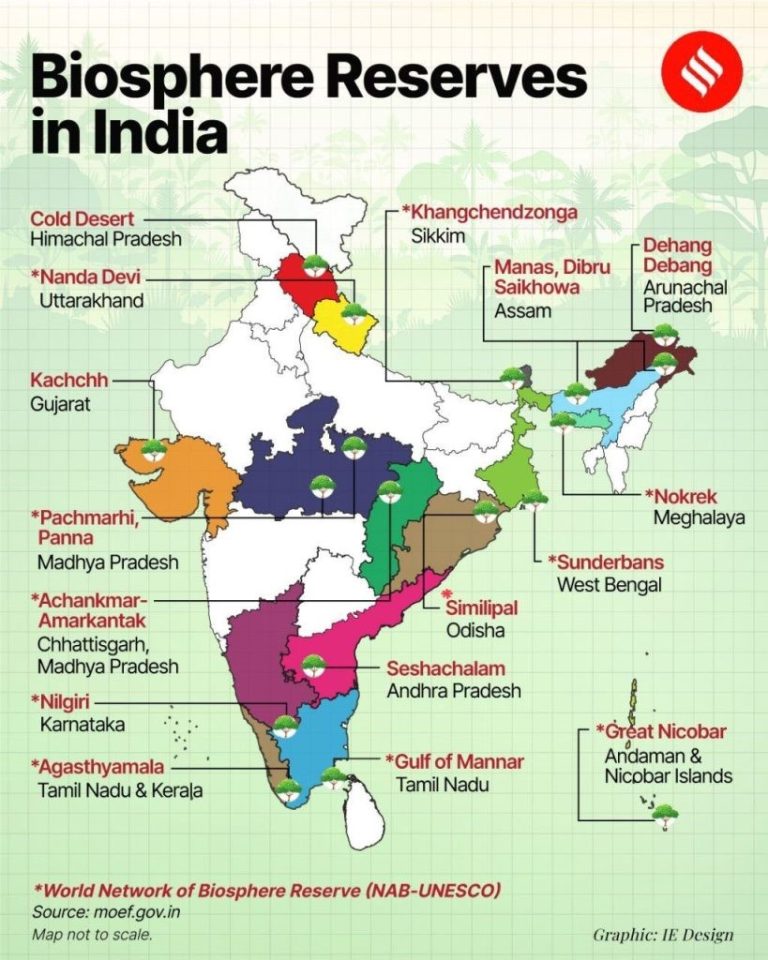
- 02 Oct 2025
In News:
UNESCO has included India’s Cold Desert Biosphere Reserve, located in Lahaul-Spiti district of Himachal Pradesh, in its World Network of Biosphere Reserves (WNBR) during the 37th ICC–MAB session (2025). This recognition makes it India’s first high-altitude cold desert biosphere reserve to join the global network, highlighting the country’s commitment to sustainable mountain ecosystem management.
About the Cold Desert Biosphere Reserve
- Established: 2009
- Location: Western Himalayas, Trans-Himalayan region of Himachal Pradesh
- Area: 7,770 sq. km
- Altitude: 3,300–6,600 m
- Constituent Areas:Pin Valley National Park, Kibber Wildlife Sanctuary, Chandratal Wetland, and adjoining regions.
- Terrain: Windswept plateaus, glacial valleys, alpine lakes, and high-altitude deserts.
- Zonation:
- Core Zone – 2,665 sq. km
- Buffer Zone – 3,977 sq. km
- Transition Zone – 1,128 sq. km
Biodiversity and Communities
- Flora: 655 herbs, 41 shrubs, and 17 tree species, including 14 endemic and 47 medicinal plants vital for the Sowa Rigpa (Amchi) traditional healing system.
- Fauna: 17 mammal and 119 bird species, including Snow Leopard, Tibetan Antelope, Himalayan Wolf, and Himalayan Ibex.
- Communities: Around 12,000 residents dependent on pastoralism, yak/goat herding, and high-altitude farming (barley and peas).
Maitri 2.0 Cross-Incubation Programme
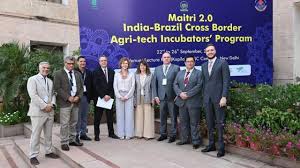
- 02 Oct 2025
In News:
The Indian Council of Agricultural Research (ICAR) recently launched the second edition of the Brazil–India Cross-Incubation Programme in Agritech (Maitri 2.0) in New Delhi. The initiative brings together innovators, startups, and research institutions from both countries to strengthen bilateral cooperation and build a more resilient and inclusive agri-food ecosystem.
About Maitri 2.0:
- Two-Way Learning Platform: Facilitates co-creation between Indian and Brazilian innovators, enabling mutual exchange of knowledge, best practices, and technology solutions.
- Objectives:
- Strengthen incubator linkages between India and Brazil.
- Promote co-incubation models and innovation-driven collaboration.
- Open opportunities in sustainable agriculture, digital technologies, and agri-value chain development.
- Foster inclusive ecosystems that directly benefit farmers and support global food security.
Strategic Significance:
Maitri 2.0 reflects the broader India–Brazil strategic partnership, aligning with their shared vision in agriculture, emerging technologies, and food and nutritional security. It builds on historical collaborations and complements global platforms such as BRICS and G20, highlighting both nations’ roles in addressing food security and climate-resilient agriculture.
Radar-Mounted Drones for Surveillance
- 02 Oct 2025
In News:
The Border Security Force (BSF), India’s first line of defence, is collaborating with the Indian Space Research Organisation (ISRO) to develop radar-mounted drones aimed at enhancing surveillance along India’s western and eastern borders. This initiative seeks to strengthen border security by providing persistent, high-accuracy monitoring of remote and difficult terrains without crossing international boundaries.
About Radar-Mounted Drones:
- Technology: Unmanned aerial systems equipped with compact radars capable of detecting moving targets, vehicles, or intruders.
- All-Weather Capability: Operates effectively in fog, darkness, rain, or adverse weather, unlike visual-only sensors.
- Real-Time Alerts: Provides immediate notifications, enabling rapid deployment of troops and timely response to border threats.
- Integrated Sensor Fusion: Potential to combine radar with infrared, high-resolution cameras, and ground sensors for enhanced detection.
- High Mobility and Scalability: Drones can be rapidly deployed in inaccessible areas, and multiple units can cover larger regions during crises.
Significance:
- The system is designed to overcome limitations of conventional border guarding, which relies on mobile soldiers or fixed towers and is effective only in limited areas.
- Radar-equipped drones can provide continuous day-and-night surveillance, monitor regions where permanent radars or outposts cannot be installed, and assist in controlling smuggling or infiltration attempts.
- The BSF, drawing experience from operations like ‘Operation Sindoor’, has also established a School of Drone Warfare at its Tekanpur Academy in Madhya Pradesh. In the coming months, the force plans to manufacture these radar-equipped drones in-house, further enhancing India’s technological edge in border security.
- This initiative exemplifies the growing role of technological interventions in modern border management, ensuring vigilance, rapid response, and comprehensive monitoring of India’s frontier regions.
Siphon-Powered Desalination
- 02 Oct 2025
In News:
- Researchers at the Indian Institute of Science (IISc), Bengaluru, have developed an innovative siphon-powered thermal desalination system that can transform seawater into potable water faster, cheaper, and more reliably than existing technologies.
- The breakthrough addresses long-standing challenges in solar desalination, such as salt buildup and limited wicking height, offering a scalable solution for water-stressed regions.
How the Siphon-Powered System Works:
- Composite Siphon: A fabric wick paired with a grooved metal surface continuously draws seawater from a reservoir.
- Gravity Flow: Ensures smooth movement and flushes away salt before crystallization occurs.
- Thin-Film Evaporation: Water spreads as a thin layer on heated metal surfaces and evaporates efficiently.
- Ultra-Narrow Air Gap: Vapor condenses just 2 mm away on a cooler surface, enhancing efficiency.
- Multistage Stacking: Multiple evaporator–condenser pairs recycle heat, maximizing water output.
Key Features and Advantages:
- High Efficiency: Produces more than 6 litres of potable water per square metre per hour under sunlight, significantly higher than conventional solar stills.
- Low-Cost Materials: Uses aluminum and fabric, making it affordable and easy to deploy.
- Energy Flexibility: Operates on solar energy or waste heat, enabling off-grid functionality.
- Durability: Can handle highly saline water (up to 20% salt) without clogging.
- Scalability: Suitable for villages, coastal areas, disaster zones, and island nations.
Significance:
- Water Security: Provides a sustainable solution for drinking water scarcity in remote and off-grid regions.
- Innovation Leap: Overcomes technical limits of traditional solar stills, particularly salt scaling and wicking height.
- Sustainable Development: Eco-friendly, low-cost, and aligned with SDG 6 (Clean Water and Sanitation).
Supported by India’s Department of Science and Technology (DST) and published in Desalination, this technology could make the ocean a reliable source of fresh water for millions, emphasizing simplicity, salt resistance, and scalability as its core strengths.
Special and Differential Treatment (SDT)
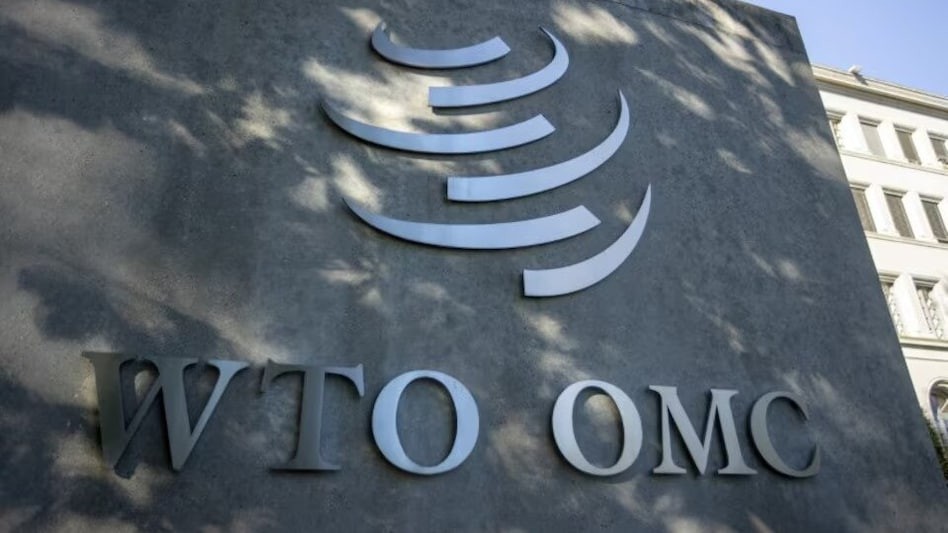
- 02 Oct 2025
In News:
China has announced that it will continue to be classified as a developing country within the World Trade Organization (WTO) but will no longer seek Special and Differential Treatment (S&DT) in future negotiations.
About Special and Differential Treatment (S&DT):
- S&DT grants developing and least-developed countries (LDCs) flexibilities in implementing WTO obligations, including longer deadlines, preferential market access, safeguard measures, and technical assistance.
- Introduced under GATT in the 1960s and formalized in WTO agreements (1995) and the Doha Development Agenda (2001).
- LDCs receive additional automatic benefits; other countries self-declare their status, subject to challenge by WTO members.
Significance of China’s Decision:
- China, historically a major beneficiary of S&DT, will forego such benefits while retaining its developing country status.
- The move signals support for multilateral trade and contributes to WTO reform, addressing concerns raised by the United States and others over selective access to S&DT.
- It highlights the tension between economic capabilities and self-declared developing status, especially among major economies.
Implications:
- Encourages balanced WTO negotiations and strengthens the global trading system.
- Marks a step towards aligning development considerations with global economic realities without relinquishing China’s role in the Global South.
AstroSat
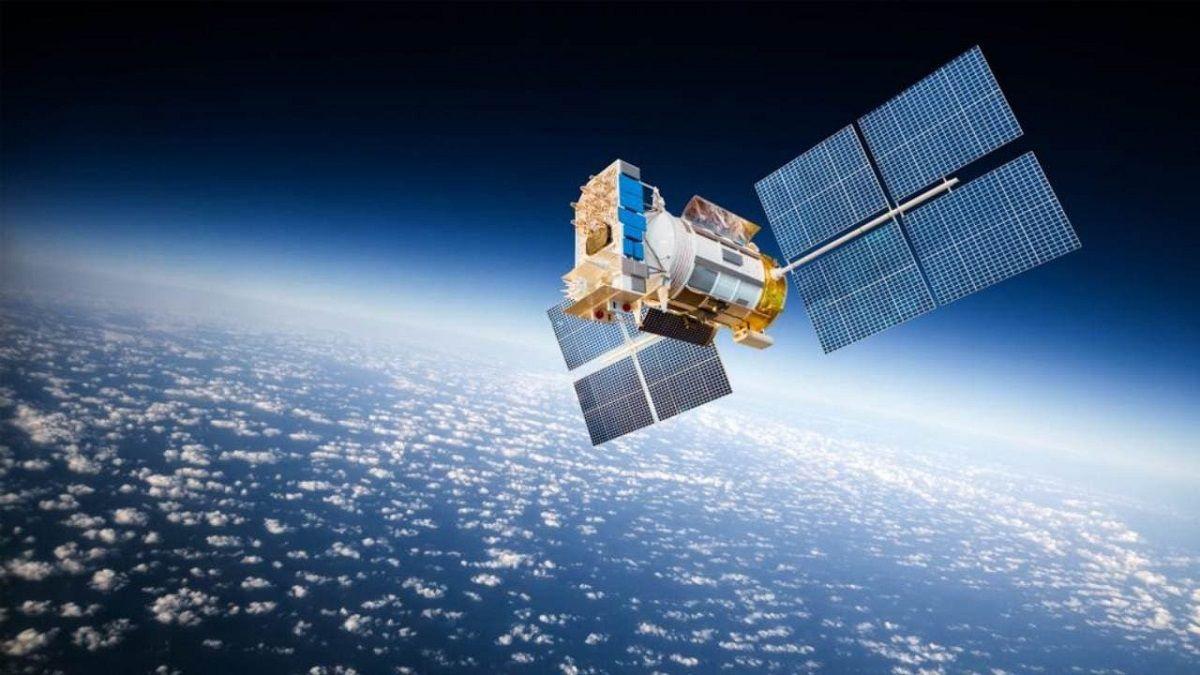
- 01 Oct 2025
In News:
India’s first dedicated Space Astronomy Observatory — AstroSat — has successfully completed a decade of operations since its launch on September 28, 2015. Designed for a mission life of five years, AstroSatcontinues to deliver valuable scientific data, marking a major milestone in India’s advancement in space-based astrophysics research.
About AstroSat
- Launched by: Indian Space Research Organisation (ISRO)
- Launch Vehicle: PSLV-C30 (XL)
- Launch Site: Satish Dhawan Space Centre (SDSC), Sriharikota
- Launch Date: September 28, 2015
- Mission Life: Originally 5 years, extended due to sustained functionality and scientific output
- Managed by:Mission Operations Complex (MOX) of ISTRAC, Bengaluru
AstroSat represents India’s first multi-wavelength space observatory, capable of observing celestial bodies in Visible, Ultraviolet (UV), and low and high-energy X-ray bands of the electromagnetic spectrum simultaneously — a capability possessed by only a handful of space observatories globally.
Scientific Objectives
AstroSat was conceived to advance India’s capability in space-based astronomy and to deepen understanding of high-energy astrophysical phenomena. Its key scientific goals include:
- Investigating high-energy processes in binary star systems containing neutron stars and black holes.
- Estimating magnetic field strengths of neutron stars.
- Studying star formation regions and energetic star systems beyond the Milky Way.
- Detecting and monitoring transient X-ray sources (brief, bright cosmic events).
- Conducting a limited deep-field survey of the universe in the ultraviolet region.
Key Instruments (Payloads)
AstroSat carries five scientific payloads, each contributing to multi-spectral observations:
- Ultra Violet Imaging Telescope (UVIT):Observes celestial objects in near and far ultraviolet as well as visible wavelengths, helping in the study of star formation and evolution.
- Large Area X-ray Proportional Counter (LAXPC):Detects time variability and spectral properties of X-ray sources in the 3–80 keV range.
- Cadmium–Zinc–Telluride Imager (CZTI):Observes hard X-rays (above 20 keV) and helps study gamma-ray bursts and black hole emissions.
- Soft X-ray Telescope (SXT):Provides soft X-ray imaging and spectroscopy to study compact objects like neutron stars and white dwarfs.
- Scanning Sky Monitor (SSM):Continuously scans the sky to detect new transient X-ray sources and track their variability.
Study In India (SII) Portal
- 01 Oct 2025
In News:
The University Grants Commission (UGC) has mandated that all foreign nationals studying in Indian Higher Education Institutions (HEIs) must now register on the newly launched Study in India (SII) portal. The move seeks to centralise data, streamline admission and visa processes, and strengthen compliance monitoring for international students studying in India.
Background and Context
Until now, foreign students seeking admission in Indian universities had to apply directly to individual institutions, which also facilitated their visa processes. However, the absence of a centralised database made it difficult for authorities to track foreign student numbers, monitor visa compliance, and address instances of overstaying or misuse of study visas.
To overcome these challenges, the Ministry of Education (MoE), in collaboration with the UGC, has introduced the Study in India portal as a digital one-stop platform integrating admissions, visa processing, and compliance tracking.
About the Study in India (SII) Portal
- Nodal Ministry: Ministry of Education (MoE), Government of India
- Implementing Agency: University Grants Commission (UGC)
- Objective: To promote India as a global education hub and simplify access for international students seeking to study in Indian higher education institutions.
Key Features
- Single-Window Digital Platform:
- Acts as a unified interface for application submission, admission processing, and student visa facilitation.
- Enables foreign students to explore regular, short-term, and long-term courses across Indian universities and HEIs.
- Comprehensive Academic Directory:
- Lists undergraduate, postgraduate, and doctoral programmes available in participating institutions.
- Includes courses from the Indian Knowledge System (IKS) — such as Yoga, Ayurveda, classical music, and traditional arts — highlighting India’s cultural and intellectual heritage.
- Unique SII-ID Generation:
- Upon registration, each student receives a unique SII-ID, which must be quoted while applying for the student visa.
- The visa process is now directly linked to the SII portal, ensuring authenticity and easier tracking.
- Institutional Accountability:
- HEIs admitting foreign students must appoint a Compliance Officer to oversee adherence to all SII guidelines and data-reporting requirements.
- Institutions are required to update foreign student details regularly on the portal for regulatory oversight.
- Information Gateway:Provides details about academic facilities, research opportunities, campus infrastructure, and student support services to guide prospective applicants.
Agri-Stack Scheme
- 01 Oct 2025
In News:
- The Government of Uttar Pradesh has issued a stern directive to all District Magistrates (DMs), warning of strict action against officials who fail to complete farmer registration under the Agri-Stack scheme within the revised deadline.
- Beginning October 16, 2025, DMs have been allotted one month to ensure 100% registration of farmers, a crucial step in the implementation of this national digital agriculture initiative.
About the Agri-Stack Scheme
- The Agri-Stack is a national digital infrastructure being developed by the Ministry of Agriculture and Farmers Welfare, in collaboration with state governments, to digitally transform Indian agriculture.
- It aims to create a unified database of farmers and farmlands, integrating information on land records, crop patterns, and scheme benefits.
- The system is envisioned to serve as a foundational digital layer for data-driven governance, policy formulation, and targeted service delivery to farmers.
Objectives and Key Features
- Empowerment through Data: Enables the creation of a unique digital identity for every farmer through a Farmer ID linked to Aadhaar, ensuring accurate targeting of benefits.
- Efficiency and Transparency: Digitally connects demographic data, landholdings, and scheme eligibility, minimizing leakages and duplication.
- Customized Services: Facilitates localized advisories, early warning systems for disasters and pest attacks, and timely delivery of inputs and credit.
- Ease of Governance: Provides a single, verified data source for policy planning, monitoring, and feedback management.
- Public–Private Collaboration: Enables authorized access for banks, agri-tech startups, and value-chain companies to offer tailored financial and technical services.
Core Components of the Agri-Stack
- Farmer and Farmland Registries:
- A federated digital registry of all farmers across India, compiled by states and harmonized at the central level.
- Each farmer receives a unique, verifiable Farmer ID, dynamically linked to farmland plot data for non-legal, advisory, and planning purposes.
- Unified Farmer Service Interface (UFSI):
- A technical framework that ensures data interoperability between government and authorized private stakeholders.
- Enables federated data exchange with consent-based access, improving coordination across sectors like finance, insurance, and agri-input supply.
- Crop Sown Registry:
- Digitally records seasonal crop data for every farm using smartphone, drone, and satellite imagery.
- Replaces traditional manual crop surveys with real-time, geo-referenced data for better yield estimation and policy response.
- Agri-Stack Sandbox:A testing environment that allows authorized users (such as agri-tech firms and banks) to safely experiment with sample datasets and digital tools before gaining production-level access.
- Consent Manager:
- Empowers farmers to control the sharing of their personal data.
- Data access is granted only with explicit consent, which can be revoked at any time, ensuring privacy and accountability.
Lachipora Wildlife Sanctuary
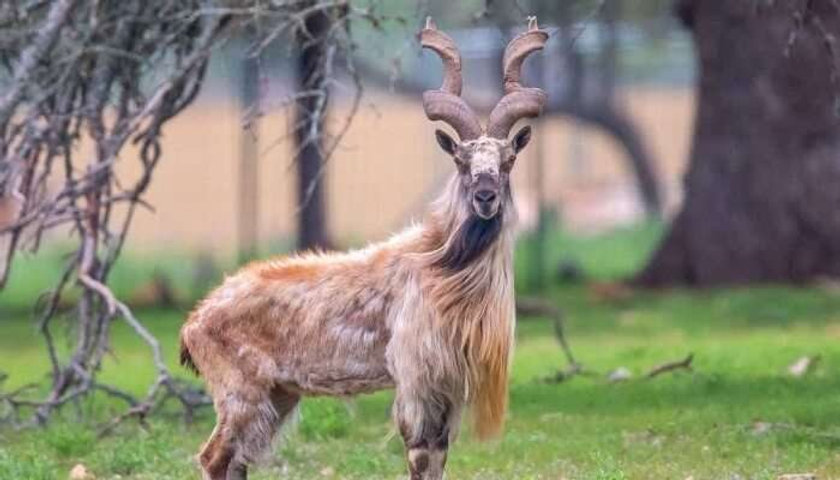
- 01 Oct 2025
In News:
The District Magistrate of Baramulla has ordered the immediate closure of 14 gypsum mining units operating within the prohibited 1-km radius of the Lachipora Wildlife Sanctuary in north Kashmir’s Uri subdivision, following directives from the Supreme Court of India.
Background and Legal Context
- The decision is based on the Supreme Court judgment in State of Uttarakhand & Others vs. Nandan Singh Bora & Others, which mandates that no mining or quarrying activity is permissible within 1 km of any protected forest or wildlife sanctuary.
- Furthermore, if the Eco-Sensitive Zone (ESZ) of a sanctuary extends beyond 1 km, the restriction applies to the entire notified ESZ area.
- Subsequent surveys conducted by the Wildlife Warden, North Kashmir Division (Sopore), confirmed that several gypsum mining units were functioning within the restricted buffer zone of Lachipora. Acting on this report, the district authorities ordered the immediate suspension of all mining operations to prevent further ecological degradation.
- Officials emphasized that the move aims to preserve the fragile ecology of the region, which forms a vital part of the North Kashmir forest belt and supports diverse wildlife species. The crackdown also aligns with the Geology and Mining Department’s intensified efforts to curb illegal quarrying across Baramulla district.
About Lachipora Wildlife Sanctuary
- Location: Situated in Baramulla district, Jammu & Kashmir, near the village of Lachipora, on the northern banks of the Jhelum River.
- Established: 1987
- Area: 141 sq. km
- Altitude Range: 1,630–3,300 metres
- Topography: Comprises a varied landscape of alpine meadows, gentle to steep slopes, and rocky cliffs, supporting rich biodiversity.
Ecological Significance
- Flora:The sanctuary hosts extensive coniferous forests of deodar, Himalayan white pine, and blue pine, along with broadleaf species such as birch, horse chestnut, West Himalayan fir, and Persian walnut.
- Fauna:
- Habitat for endangered species like the Hangul (Kashmir stag) and Markhor, a wild goat known for its spiral horns.
- Home to Himalayan black bear, snow leopard, musk deer, and several small mammals.
- Recognized as an Important Bird Area (IBA) for harboring the vulnerable Western Tragopan and other high-altitude avifauna.
Jal Prahar 2025
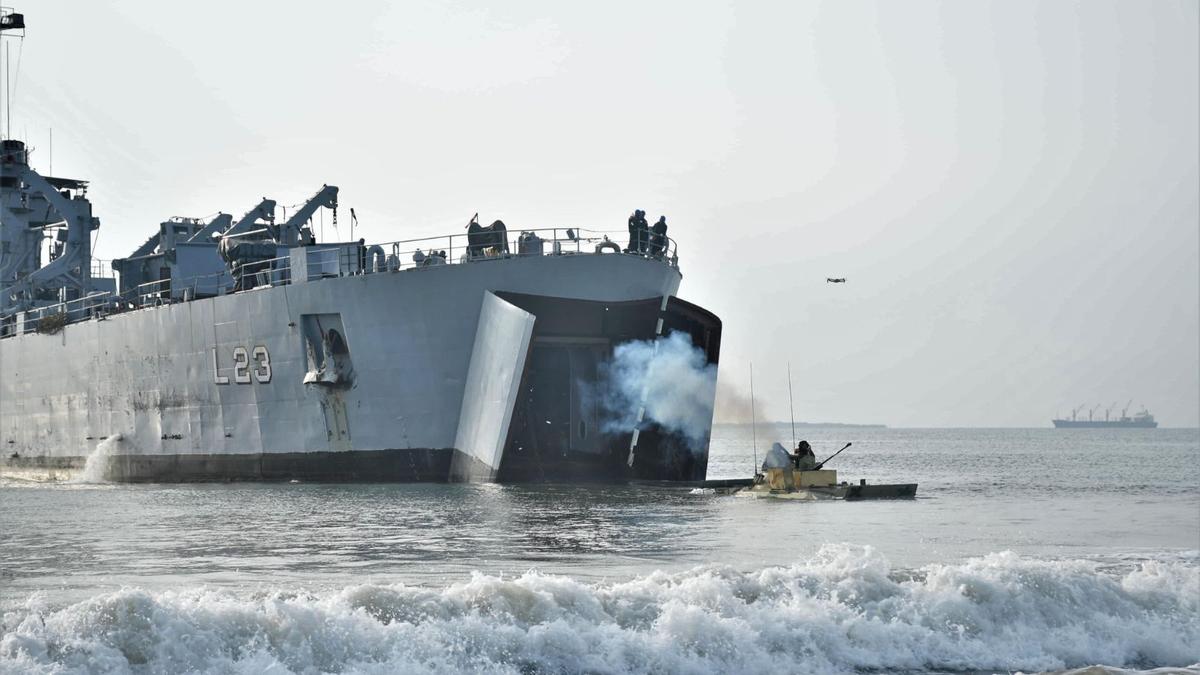
- 01 Oct 2025
In News:
The Indian Navy has successfully concluded the biannual joint amphibious exercise ‘Jal Prahar 2025’ along the eastern seaboard, in close coordination with the Indian Army. The exercise aimed to enhance joint operational readiness, inter-service synergy, and maritime security preparedness.
About Jal Prahar 2025
- Nature of Exercise:‘Jal Prahar’ is a biannual joint amphibious exercise conducted by the Indian Navy in collaboration with the Indian Army.
- Objective:To strengthen coordination, interoperability, and integration between the two forces for effective amphibious operations and coastal defence.
Exercise Structure and Key Highlights
The 2025 edition of the exercise was conducted in two phases:
- Harbour Phase (Visakhapatnam):
- Focused on the induction and integration of Army troops onboard naval platforms such as INS Gharial.
- Included onboard training sessions, safety briefings, familiarization with naval operations, and interaction activities to foster inter-service camaraderie.
- Sea Phase (Kakinada):
- Involved the execution of full-scale amphibious operations, including hard beaching, launching of Landing Craft Assaults (LCAs) and infantry combat vehicles (BMPs).
- Validated Standard Operating Procedures (SOPs) and Joint Training Protocols, ensuring seamless coordination during real-world operations.
UNEP Young Champions of the Earth Award 2025
- 30 Sep 2025
In News:
The United Nations Environment Programme (UNEP) has announced the winners of the 2025 Young Champions of the Earth Award, recognising three outstanding entrepreneurs from India, Kenya, and the United States for their innovative solutions addressing pressing environmental challenges.
About the Award
- Launched: 2017
- Relaunched: 2025, in partnership with Planet A, an environmental awareness initiative co-founded by U.S. cleantech executive Chris Kemper.
- Organised by:United Nations Environment Programme (UNEP)
- Objective: To empower and celebrate young innovators (below 30 years of age) offering scalable solutions to the triple planetary crisis — climate change, biodiversity loss, and pollution & waste.
Each winner receives USD 20,000 in seed funding, mentorship, and access to a global platform to expand their innovations. They also participate in the Planet A Pitch Competition, with opportunities to win an additional USD 100,000 growth grant and a potential USD 1 million seed investment.
2025 Award Winners
- JinaliMody (India) – Founder, Banofi Leather
- Innovation: Produces sustainable, leather-like material from banana crop waste.
- Impact: Reduces water consumption, chemical pollution, and carbon emissions associated with traditional leather production.
- Significance: A women-led initiative tackling the fast fashion industry’s environmental footprint while promoting circular economy principles.
- Joseph Nguthiru (Kenya) – Founder, HyaPak
- Innovation: Converts the invasive water hyacinth from Lake Naivasha into biodegradable packaging and seedling wrappers.
- Impact: Provides a sustainable alternative to single-use plastics while addressing invasive species management.
- Noemi Florea (United States) – Founder, Cycleau
- Innovation: Developed a compact greywater reuse system that can retrofit household sinks, showers, and laundry units.
- Impact: Converts wastewater into potable water using low energy, offering a scalable model for water conservation and reuse.
Significance
- The award exemplifies youth-driven environmental innovation, aligning with UNEP’s broader mission to foster sustainable solutions.
- It highlights global South participation, with India and Kenya demonstrating leadership in low-cost, eco-friendly technologies.
- The 2025 relaunch underscores growing private sector and media collaboration in advancing environmental entrepreneurship through platforms like Planet A.
India test-fires Agni-Prime missile from rail-based mobile launcher
- 30 Sep 2025
In News:
India has successfully test-fired the Agni-Prime (Agni-P) intermediate-range ballistic missile from a rail-based mobile launcher, marking a first-of-its-kind achievement in the nation’s defence history. The test was conducted from a platform integrated with the national railway network. This milestone represents a significant leap in India’s strategic mobility and deterrence capabilities.
About Agni-Prime Missile
- Type: Next-generation, nuclear-capable, intermediate-range ballistic missile (IRBM)
- Range: Up to 2,000 kilometres
- Developed by:Defence Research and Development Organisation (DRDO) in collaboration with the Strategic Forces Command (SFC)
- Part of: India’s Agni missile series, designed to reinforce the country’s credible minimum deterrence posture.
The Agni-Prime is equipped with advanced guidance and communication systems, featuring a canisterised launch mechanism that enhances storage safety, rapid deployment, and longer shelf life.
Rail-Based Mobile Launcher: A Game-Changing Innovation
The recent test marked the first time India used a rail-based canisterised mobile launcher.
- It can move seamlessly across the national rail network, allowing flexible positioning and quick deployment.
- The launcher enables a short reaction time with low visibility, enhancing operational stealth and survivability.
- This mobility reduces predictability of launch locations, complicating adversarial surveillance and targeting efforts.
Strategic Significance
- Enhanced Strategic Deterrence:The test demonstrates India’s ability to deliver a credible and survivable nuclear deterrent, joining the select group of nations with rail-based canisterised launch systems.
- Improved Survivability and Flexibility:Rail mobility adds a new dimension to India’s nuclear command structure by complementing road-based and silo-based systems, ensuring launch readiness even under high-threat scenarios.
- Operational Stealth and Rapid Response:The ability to launch within minutes from concealed rail positions strengthens India’s second-strike capability under its nuclear doctrine.
- Geopolitical Implications:The development aligns with India’s effort to maintain strategic stability in a complex regional environment, particularly amid evolving threats in South Asia and the Indo-Pacific.
Recent Developments in India’s Missile Programme
- In August 2025, Agni-Prime was successfully tested from Chandipur, Odisha.
- Earlier, in March 2024, under Mission Divyastra, India tested Agni-5 with MIRV (Multiple Independently Targetable Re-entry Vehicle) capability — allowing a single missile to carry and deliver multiple nuclear warheads to different targets.
- The Strategic Forces Command, operational since 2003, currently manages India’s nuclear arsenal and deployment systems.
India’s 4-Pillar Approach to Strengthen Shipbuilding, Maritime Financing, and Domestic Capacity
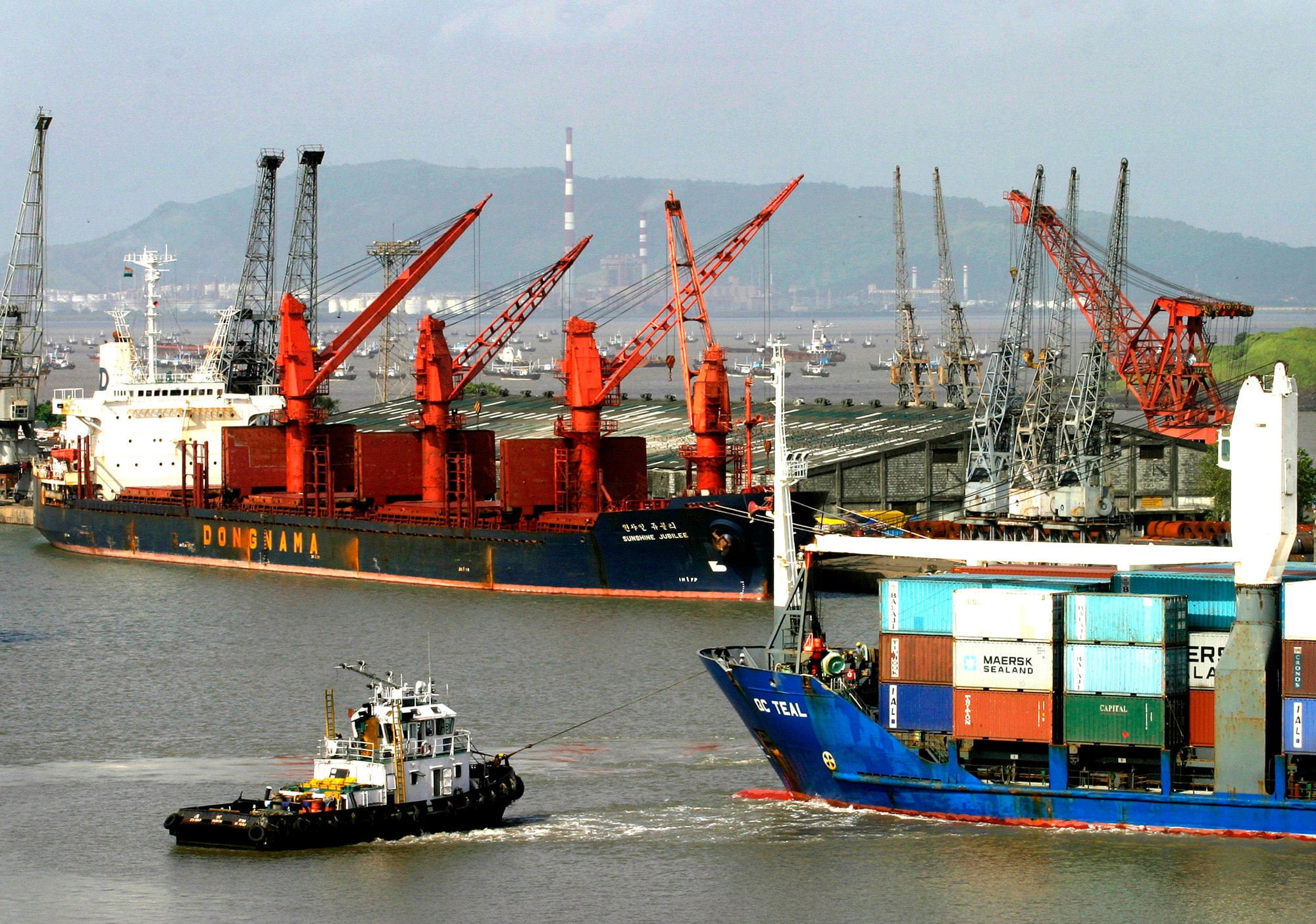
- 30 Sep 2025
In News:
In a major push to revive India’s maritime and shipbuilding sector, the Union Cabinet approved a ?69,725 crore package (September 2025) anchored on a comprehensive 4-Pillar Approach. The initiative aims to transform India into a global hub for shipbuilding and shipping services, enhance maritime self-reliance, and contribute to the vision of Aatmanirbhar Bharat.
Background
India’s maritime sector supports 95% of the nation’s trade by volume and 70% by value, making it a critical pillar of economic and strategic security. Recognized as the “mother of heavy engineering industries,” shipbuilding plays a pivotal role in employment generation, technological innovation, and defence capability. The new package seeks to address long-standing gaps in financing, infrastructure, and capacity to strengthen domestic shipyards and maritime logistics.
Objectives
- Expand domestic shipbuilding capacity to 4.5 million Gross Tonnage (GT) by 2036.
- Generate nearly 30 lakh employment opportunities.
- Mobilize ?4.5 lakh crore in investments.
- Build resilient maritime supply chains ensuring national, energy, and food security.
- Advance India’s position as a competitive and sustainable maritime economy.
The Four Pillars of the Package
1. Shipbuilding Financial Assistance Scheme (SBFAS)
- Extended till: 31 March 2036
- Corpus: ?24,736 crore
- Purpose: Incentivize shipbuilding within India by providing financial support to Indian shipyards.
- Key Feature: Introduction of a Shipbreaking Credit Note worth ?4,001 crore to encourage sustainable ship recycling and capacity utilization.
2. Maritime Development Fund (MDF)
- Corpus: ?25,000 crore
- Components:
- Maritime Investment Fund: ?20,000 crore, with 49% Government of India participation.
- Interest Incentivization Fund: ?5,000 crore to reduce the cost of borrowing and improve project bankability.
- Objective: Provide long-term financing for shipbuilding, port infrastructure, and related logistics services.
3. Shipbuilding Development Scheme (SbDS)
- Outlay: ?19,989 crore
- Aim: Expand India’s domestic shipbuilding capacity and support mega shipbuilding clusters.
- Key Features:
- Establishment of the India Ship Technology Centre under the Indian Maritime University (IMU).
- Support for greenfield and brownfield shipyards.
- Insurance and risk coverage for shipbuilding projects.
- Focus on skill development and adoption of advanced shipbuilding technologies.
4. National Shipbuilding Mission and Reforms
- A National Shipbuilding Mission will coordinate implementation and monitor outcomes of all initiatives under the package.
- Focus areas include:
- Taxation, legal, and policy reforms to streamline procedures.
- Capacity enhancement through modern shipyard development.
- Human resource and skill training to strengthen India’s maritime workforce.
- Promotion of green and sustainable shipbuilding practices aligned with global standards.
Expected Impact
- Unlock 4.5 million GT of annual shipbuilding capacity.
- Create nearly 30 lakh direct and indirect jobs across the maritime ecosystem.
- Boost investment inflows of ?4.5 lakh crore into ports, shipyards, and allied industries.
- Enhance strategic autonomy and reduce dependence on foreign shipbuilders.
- Strengthen geopolitical resilience, ensuring continuity of India’s trade, energy, and food supply chains during global disruptions.
- Foster innovation, sustainability, and competitiveness in line with “Make in India” and “Blue Economy” objectives.
SPARSH Pension System
- 30 Sep 2025
In News:
The System for Pension Administration – Raksha (SPARSH), an initiative of the Ministry of Defence (MoD), has emerged as a landmark reform in defence pension management. Recently, SPARSH resolved 87% of legacy discrepancies—addressing 5.60 lakh out of 6.43 lakh cases—and has significantly improved grievance redressal efficiency.
About SPARSH Pension System
- Launched by: Ministry of Defence
- Administered by:Defence Accounts Department (DAD) through the Principal Controller of Defence Accounts (Pensions), Prayagraj
- Coverage: Caters to pensioners from the Army, Navy, Air Force, and Defence Civilians
- Scope: Over 31.54 lakh defence pensioners across India and Nepal are onboarded on SPARSH, making it the world’s largest digital pension management system.
Objectives
- To provide a comprehensive, transparent, and paperless system for pension sanction, disbursement, and grievance redressal.
- To ensure direct pension disbursement to beneficiaries without intermediaries.
- To modernize defence pension administration by shifting from a fragmented and manual process to a centralized and integrated digital framework.
Key Features
- Centralized and Web-Based Platform:Handles pension sanction, claim, and disbursement directly into the pensioners’ bank accounts, eliminating third-party intermediaries.
- Self-Service Portal:Enables self-verification, easy data correction, and real-time access to pension details through a personal dashboard.
- Digital Life Certification:Pensioners can complete identification digitally, removing the need for physical visits to pension offices.
- Comprehensive Record Management:Maintains the entire pension lifecycle—from initiation to cessation and transfer to the last eligible beneficiary.
- Grievance Management:Provides an integrated mechanism for service requests and grievance redressal within the same platform.
Significance
SPARSH represents a paradigm shift in defence pension administration—from manual and fragmented systems to a transparent, technology-driven model. It embodies the government’s commitment to “Minimum Government, Maximum Governance”, ensuring efficiency, accountability, and dignity for millions of defence pensioners.
By integrating real-time disbursal, grievance monitoring, and self-service accessibility, SPARSH has strengthened financial inclusion, digital governance, and welfare delivery within India’s defence ecosystem.
L-1 Visa

- 30 Sep 2025
In News:
The U.S. administration’s decision to impose a steep $100,000 fee on new H-1B visa applications has reignited debate over whether the L-1 visa could serve as a practical alternative for Indian professionals. While both facilitate skilled migration, they serve distinct purposes and cater to different categories of workers.
About the L-1 Visa
- Nature and Purpose:
- The L-1 visa is a non-immigrant work visa designed for intra-company transfers within multinational corporations.
- It enables global firms to relocate executives, managers, and employees with specialized knowledge from their overseas branches to U.S. offices.
- Introduced under the Immigration and Nationality Act (1965), it aims to promote international business operations and internal talent mobility without depending on the external labour market.
- Categories:
- L-1A: For executives and managers; maximum stay of 7 years.
- L-1B: For employees with specialized knowledge; maximum stay of 5 years.
Applicants must have worked at least one continuous year abroad for the same company within the preceding three years.
Key Features and Advantages
- No Cap or Lottery: Unlike the H-1B, the L-1 has no annual quota or lottery system, allowing year-round applications.
- Blanket Petitions: Large multinationals can file blanket petitions for quicker processing.
- Dual Intent: L-1 holders can apply for a green card without jeopardizing their visa status.
- Dependent Work Rights: Spouses on L-2 visas can work freely in the U.S., offering significant flexibility for families.
- Corporate Convenience: Firms can manage global mobility efficiently, especially for leadership or niche technical roles.
Limitations and Challenges
- Narrow Eligibility: Only employees of the same multinational company are eligible. The visa cannot be used to switch to another employer in the U.S.
- High Scrutiny: U.S. consulates, especially in India, closely scrutinize “specialized knowledge” claims, leading to higher rejection rates than H-1B visas.
- Time-Bound Stay: L-1 visas have strict duration limits and cannot be extended while awaiting permanent residency.
- No Portability: The visa binds the employee to the sponsoring company, unlike H-1B holders who can change employers under certain conditions.
L-1 vs H-1B: The Key Differences
|
Aspect |
L-1 Visa |
H-1B Visa |
|
Purpose |
Intra-company transfer |
Employment in speciality occupation |
|
Eligibility |
Must have worked abroad for the same company |
Bachelor’s degree in speciality field |
|
Annual Cap |
No cap |
85,000 new visas per year |
|
Employer Flexibility |
Cannot switch companies |
Can change employers (with transfer approval) |
|
Wage Requirement |
No prevailing wage rule |
Must meet U.S. Department of Labor’s wage standards |
|
Processing System |
No lottery |
Lottery-based selection |
|
Dependent Work Rights |
L-2 spouse can work freely |
H-4 spouse requires separate authorization |
|
Maximum Stay |
5–7 years (non-extendable beyond limits) |
6 years (extendable in green card process) |
Global Forest Fund
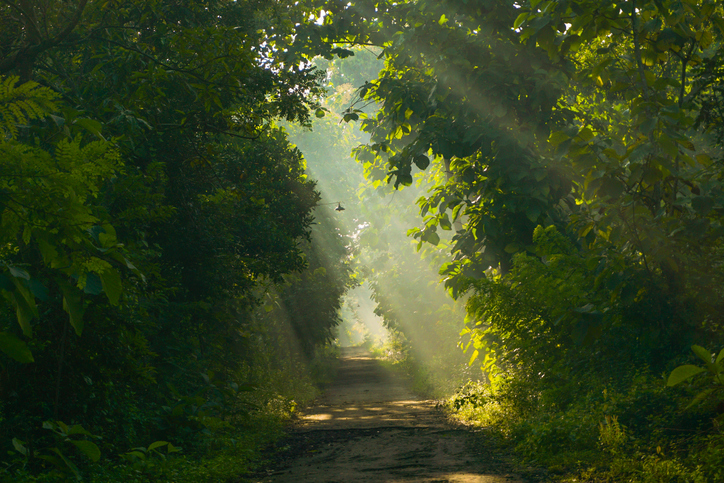
- 29 Sep 2025
In News:
- Brazil is set to become the first country to invest in the Tropical Forests Forever Facility (TFFF) — a multilateral fund designed to support long-term tropical forest conservation.
- The announcement is expected to be made at the United Nations headquarters in New York, marking a major step toward reshaping global climate finance ahead of COP30, which Brazil will host in Belém, Amazon region, in November.
About the Tropical Forests Forever Facility (TFFF)
- Origin: Proposed by Brazil during COP28 (UAE, 2023), the TFFF aims to create a permanent, self-sustaining financial mechanism to conserve tropical forests across the globe.
- Nature: It is a global, multilateral, and endowment-style fund—the first of its kind—dedicated exclusively to protecting tropical forests and ensuring steady, performance-based payments to countries maintaining their forest cover.
- Goal: To mobilize USD 125 billion through a blended finance structure, combining sovereign and private-sector contributions.
Financial Structure and Mechanism
- Funding Model:The fund will function as a permanent endowment, investing its corpus in diversified financial portfolios that generate sustainable returns.
- The returns will finance annual stipends to participating tropical forest countries (TFCs), based on the extent of their standing forests.
- Composition of Funds:
- Sponsors (20%) – High-income countries (as per World Bank classification) and global philanthropies.
- Market Investors (80%) – Institutional investors, sovereign wealth funds, and endowments participating via debt instruments (such as green bonds).
- Fund Management: Likely to be handled by a Multilateral Development Bank (MDB) such as the World Bank, ensuring transparency and credibility.
- Initial Target:To reach the full USD 125 billion goal, Brazil plans to secure an initial USD 25 billion from governments and philanthropies, which would serve as an anchor to attract an additional USD 100 billion from private investors.
Brazil’s Role and Strategic Intent
- Brazil’s upcoming investment will make it the first contributor to the fund — signaling its confidence in the mechanism and encouraging other nations to follow suit.
- According to official sources, the investment amount will be “considerable,” intended to set a benchmark and demonstrate Brazil’s commitment to global forest conservation.
- As home to the world’s largest tropical rainforest, Brazil stands to receive significant future payouts under the TFFF, reinforcing its dual role as a beneficiary and a leader in climate stewardship.
Global Participation and Support
- Several countries have already expressed interest in joining the initiative, including China, the United Kingdom, France, Germany, Norway, Singapore, and the United Arab Emirates.
- Notably, China has conveyed its intention to contribute among the first investors — a move seen as a potential turning point in global climate finance, traditionally dominated by Western donors.
Significance
- Bridging Climate Finance Gaps:The TFFF introduces a results-based, long-term funding model for forest conservation, shifting away from short-term grants toward permanent, scalable financing.
- Shared Global Responsibility:The participation of both developed and developing nations underscores a more equitable climate finance architecture, aligning with the principle of common but differentiated responsibilities (CBDR).
- Boost to COP30 and Viksit Bharat 2047 Goals:Brazil’s leadership strengthens its position ahead of COP30 and aligns with India’s own emphasis on sustainable development and green finance under Mission LiFE and Viksit Bharat 2047 frameworks.
- Preserving Global Carbon Sinks:By rewarding countries for maintaining forests, the fund provides a direct economic incentive for protecting vital ecosystems that regulate global climate patterns.
Adi Yuva Fellowship & Adi Karmayogi Volunteers Programme

- 29 Sep 2025
In News:
- The Ministry of Tribal Affairs (MoTA), in partnership with the United Nations in India, has launched the Adi Yuva Fellowship and the Adi Karmayogi Volunteers Programme under the umbrella of the Adi Karmayogi Abhiyan — a flagship initiative envisioned as the world’s largest tribal grassroots leadership movement.
- These initiatives aim to empower tribal youth, strengthen grassroots governance, and promote inclusive development in alignment with the goals of Viksit Bharat 2047 and the 2030 Agenda for Sustainable Development.
About Adi Karmayogi Abhiyan
- Coverage: Targets 11 crore citizens across 1 lakh tribal-dominated villages in 550 districts of 30 States and UTs.
- Objective: To transform governance into a people’s movement rooted in responsive, accountable, and citizen-centric administration.
- The ongoing Adi SewaParv (17 September – 2 October 2025) focuses on preparing Tribal Village Vision 2030 Action Plans through community–government collaboration.
1. Adi Yuva Fellowship
Overview
The Adi Yuva Fellowship, supported by UN India, is a first-of-its-kind national programme designed to nurture tribal youth leadership through structured learning, mentorship, and professional development.
Key Features
- Duration: 12-month paid fellowship with a tailored learning plan combining knowledge-building, on-the-job training, and reflective practice.
- Support Package: Monthly allowances, comprehensive health and life insurance, and access to UN and commercial learning platforms.
- Skill Linkages: Fellows will be connected to national employability schemes such as:
- Pradhan Mantri Kaushal Vikas Yojana (PMKVY) 4.0
- National Apprenticeship Promotion Scheme (NAPS)
- PM Viksit Bharat Rozgar Yojana
- Mentorship and Exposure: Fellows will receive structured mentorship, engage in peer learning, and gain exposure to national and international platforms.
- Deployment: The first batch of 16 Fellows will be selected through a competitive process and placed with UN agencies at national, state, and district levels.
Objective
To build a cadre of empowered tribal youth who can contribute to governance, entrepreneurship, innovation, and community-led development, ensuring that tribal voices shape India’s growth story.
2. Adi Karmayogi Volunteers Programme
Overview
Supported by the United Nations Population Fund (UNFPA), the Adi Karmayogi Volunteers Programme is aimed at strengthening last-mile service delivery and promoting community participation in tribal regions.
Key Features
- Deployment:
- 82 Adi Karmayogi Volunteers (UN Community Volunteers) deployed across 82 blocks in 13 districts of Madhya Pradesh and Rajasthan.
- They will engage in anintensive two-month grassroots programme.
- Role and Activities:
- Support preparation of Village Vision 2030 Action Plans.
- Conduct awareness campaigns, outreach drives, and capacity-building sessions.
- Facilitate improved access to government schemes and services.
- Outcome: Strengthen inclusive governance, local participation, and service delivery at the village level.
Significance of the Initiatives
1. Empowering Tribal Youth
- Provides structured opportunities for skill enhancement, leadership, and employability.
- Bridges the gap between education, governance, and community development.
2. Strengthening Governance
- Promotes citizen-centric and participatory governance in tribal regions.
- Empowers communities to actively contribute to their own development vision.
3. Advancing India–UN Partnership
- Demonstrates India’s collaborative approach towards achieving the Sustainable Development Goals (SDGs).
- Highlights the One UN approach for inclusive and sustainable growth.
India’s first overseas defence manufacturing facility

- 29 Sep 2025
In News
- In a major step towards expanding India’s defence industrial footprint globally, Defence Minister Rajnath Singh and his Moroccan counterpart AbdelatifLoudyi jointly inaugurated India’s first overseas defence manufacturing facilityatBerrechid, Morocco.
- Set up by Tata Advanced Systems Limited (TASL) in collaboration with the Defence Research and Development Organisation (DRDO), the facility marks a historic milestone in India’s defence diplomacy and the growing strategic partnership between India and Morocco.
About the Facility
- Location:Berrechid, Morocco
- Established by: Tata Advanced Systems Limited (TASL) in partnership with DRDO
- Launched in: 2025
- Scale: Spread over 20,000 sq. metres, it is Morocco’s largest defence manufacturing facility and India’s first such overseas plant by a private defence company in Africa.
- Primary Production: The Wheeled Armoured Platform (WhAP) — an indigenously developed 8×8 modular combat vehicle jointly designed by TASL and DRDO.
Key Features
- Product Range: The WhAP will be produced in multiple configurations including:
- Infantry Fighting Vehicle
- Armoured Personnel Carrier
- Reconnaissance Vehicle
- Command Post
- Mortar Carrier
- Armoured Ambulance
- Technical Capabilities:
- Equipped with advanced mobility, armour protection, remote weapon stations, and anti-tank guided missile systems.
- Incorporates indigenous technologies and customised modular design for varied combat roles.
- Local Sourcing:
- Initially, one-third of components will be sourced locally from Morocco.
- This is expected to increase to 50% in later phases, fostering industrial collaboration and technology transfer.
Strategic Objectives
The facility aims to advance India’s Aatmanirbhar Bharat vision beyond domestic production to global partnerships under the theme “Make with Friends, Make for the World.”
Key Goals:
- Strengthen India–Morocco defence cooperation and bilateral industrial partnerships.
- Promote defence exports and technology sharing with friendly nations.
- Support regional security and stability across Africa and Europe through capacity-building.
Significance
1. Strategic and Diplomatic
- Establishes Morocco as a strategic hub for Indian defence manufacturing in North Africa and Europe.
- Deepens India’s defence diplomacy and enhances its global footprint in high-technology sectors.
- Reinforces India’s credibility as a trusted partner in defence collaboration.
2. Economic and Industrial
- Generates direct and indirect employment in Morocco.
- Develops a local supplier ecosystem and supports critical technology capabilities within the host nation.
- Boosts India’s defence exports while contributing to Morocco’s industrial development.
3. Technological and Strategic Autonomy
- Demonstrates India’s growing capability to design, produce, and export advanced defence systems.
- Showcases India’s transition from import dependence to a global exporter of high-end military technologies.
World Food India (WFI) 2025
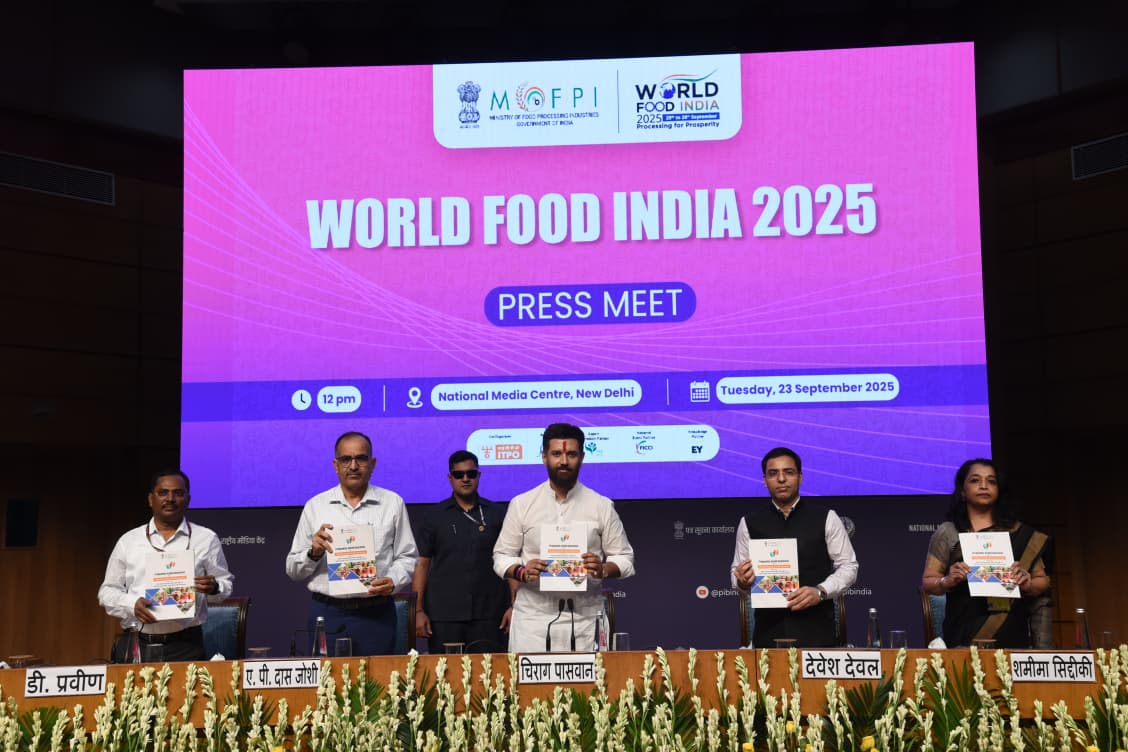
- 29 Sep 2025
In News:
The fourth edition of World Food India (WFI) 2025was held at Bharat Mandapam, New Delhi, organised by the Ministry of Food Processing Industries (MoFPI).
Overview
World Food India is the flagship global event of MoFPI that brings together key stakeholders from across the food ecosystem — governments, industry leaders, investors, and innovators — to strengthen India’s positioning as the “Food Basket of the World.”
Since its inception in 2017, the event has evolved into a transformative platform for food innovation, investment, and sustainability. The 2025 edition, spread across 1,00,000 sq. metres, is the largest congregation in the history of India’s food processing sector, with participation from:
- 21 countries, 21 States/UTs, 10 Central Ministries, and 5 allied organisations
- Over 1,700 exhibitors, 500 international buyers, and representatives from 100+ nations
Key Highlights of World Food India 2025
Partner and Focus Countries
- Partner Countries: New Zealand and Saudi Arabia
- Focus Countries: Japan, Russia, UAE, and Vietnam
Parallel and Thematic Events
- 3rd Global Food Regulators Summit (FSSAI): To harmonise international food safety standards.
- 24th India International Seafood Show (SEAI): To promote India’s seafood export potential.
- Reverse Buyer–Seller Meet (APEDA): Featuring over 1,000 buyers to boost agri-food exports.
- Knowledge Sessions: 45+ conferences, thematic discussions, and CXO roundtables with 100+ global agri-food leaders.
- Special Pavilions: Dedicated spaces for States, Ministries, Pet Food, Technology, Startups, and International exhibitors.
Core Pillars of WFI 2025
The 2025 edition revolves around five strategic pillars reflecting the government’s holistic vision for the food processing sector:
- Sustainability and Net Zero Food Processing – promoting climate-resilient and energy-efficient processing systems.
- India as a Global Food Processing Hub – showcasing India’s vast agri-resource base and processing potential.
- Frontiers in Food Processing, Products, and Packaging Technologies – highlighting innovation and technology adoption.
- Food for Nutrition, Health, and Wellness – aligning with the goals of nutritional security and public health.
- Livestock and Marine Products Driving the Rural Economy – boosting rural livelihoods and export competitiveness.
Significance of World Food India 2025
Economic Impact
- Attracts global and domestic investment in R&D, startups, logistics, and cold chain infrastructure.
- Enhances farm-to-fork linkages and promotes value addition across the supply chain.
Strategic Importance
- Reinforces India’s commitment to sustainable food systems in line with the UN Sustainable Development Goals (SDGs).
- Fosters international collaboration in technology, innovation, and regulatory frameworks.
Global Positioning
- Projects India as a leader in food innovation, safety, and sustainability.
- Strengthens India’s image as a trusted global supplier of high-quality, nutritious, and sustainable food products.
Exercise Cold Start
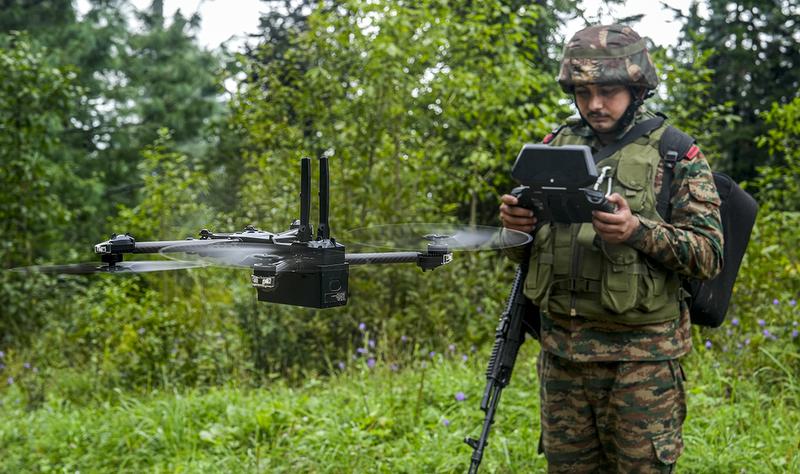
- 29 Sep 2025
In News:
- India will conduct a major tri-service exercise, ‘Cold Start’, in the first week of October 2025 in Madhya Pradesh.
- The exercise, involving the Army, Navy, and Air Force, will focus on testing drones and counter-drone systems to strengthen the country’s integrated air defence capabilities.
- It is being described as the largest such joint drill since Operation Sindoor.
About Exercise Cold Start
- Nature: A tri-service military exercise designed to simulate aerial threats and defence responses using drones, UAVs, and counter-drone systems.
- Objective:
- To evaluate operational readiness of the armed forces against evolving aerial threats.
- To identify technological and procedural gaps in India’s air defence systems.
- To enhance interoperability and coordination between the three defence services.
- Participants:
- Indian Army, Navy, and Air Force as primary participants.
- Supported by industry partners, research and development (R&D) agencies, and academic institutions, fostering a military–industry–academia partnership.
Key Features
- Live demonstrations of drones and counter-drone systems.
- Integration of GPS jamming, electronic warfare, and surveillance technologies.
- Testing of indigenous technologies developed through collaboration between defence R&D and private industry.
- Conceptual inspiration: The integrated air defence approach draws from the Sudarshan Chakra—symbolising a seamless and multi-layered defensive network against drones, UAVs, and hypersonic weapons.
Significance
- Enhances Jointness: Promotes synergy among the three defence services in technology-driven warfare.
- Technological Edge: Strengthens India’s counter-drone warfare capabilities and electronic warfare resilience.
- Strategic Readiness: Demonstrates India’s preparedness to respond to emerging aerial and cyber threats in the evolving domain of modern warfare.
- Defence Innovation: Encourages indigenous R&D and strengthens public–private collaboration in developing next-generation air defence systems.
Viksit Bharat Buildathon 2025
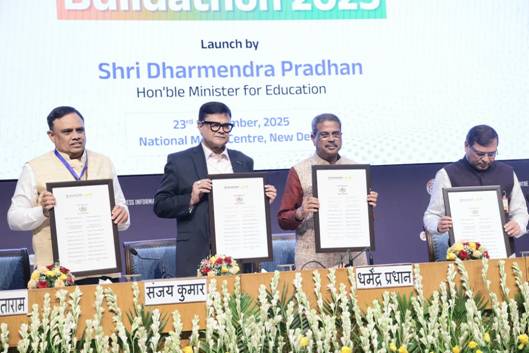
- 28 Sep 2025
In News:
- Union Education Minister Dharmendra Pradhan launched the Viksit Bharat Buildathon 2025, a nationwide school innovation movement aimed at nurturing creativity, entrepreneurship, and technological problem-solving among young students.
- The initiative seeks to transform school campuses into innovation hubs, empowering youth as the architects of a self-reliant and developed India.
About Viksit Bharat Buildathon 2025
- Organisers: Department of School Education and Literacy (DoSEL), Ministry of Education, in collaboration with Atal Innovation Mission (AIM), NITI Aayog, and the All India Council for Technical Education (AICTE).
- Culmination: January 2026, with felicitation of over 1,000 winners.
- Participants: School students across India — the largest school-level hackathon ever conducted.
Objectives
- Promote Grassroots Innovation: Cultivate a problem-solving mindset and creative thinking among school students.
- Foster Self-Reliance: Encourage innovation aligned with the principles of Atmanirbhar Bharat and Vocal for Local.
- Celebrate Swadeshi Innovation: Build indigenous solutions addressing real-world challenges.
- Enable National Development: Channel student ideas into tangible solutions for Samriddhi (prosperity) and Viksit Bharat (developed India).
- Create Global Impact: Project India as a global innovation capital and potential record-holder for the world’s largest synchronized innovation event.
Themes of the Buildathon
The competition revolves around four guiding themes that reflect India’s developmental vision:
- Vocal for Local – Promoting indigenous products and local entrepreneurship.
- Atmanirbhar Bharat – Encouraging technological self-reliance and innovation.
- Swadeshi – Leveraging traditional knowledge and indigenous technologies.
- Samriddhi – Designing solutions for inclusive and sustainable prosperity.
Structure and Timeline
|
Phase |
Timeline (2025–26) |
Key Activity |
|
Registration |
Sept 23 – Oct 6 |
Schools and students register via vbb.mic.gov.in |
|
Preparation Period |
Oct 6 – Oct 13 |
Teachers mentor student teams for ideation and submission |
|
Live Synchronized Innovation Event |
Oct 13 |
Nationwide simultaneous innovation challenge |
|
Final Submission Window |
Oct 13 – Oct 31 |
Upload of prototypes and project ideas |
|
Evaluation Phase |
Nov 1 – Dec 31 |
Expert panel assesses entries |
|
Grand Felicitation |
Jan 2026 |
Announcement of results and recognition of 1,000+ winners |
Building on Previous Success
The Buildathon builds upon the momentum of the School Innovation Marathon 2024, which led to:
- The Student Innovator Programme (SIP) and Student Entrepreneurship Programme (SEP).
- Multiple patents and startup ventures emerging from Atal Tinkering Labs (ATLs).
This continuum strengthens India’s school innovation ecosystem, linking student creativity to research, incubation, and entrepreneurship.
Significance
- Grassroots Empowerment: Encourages innovation at the school level, making every student a potential problem-solver.
- Integration with NEP 2020: Supports the National Education Policy’s emphasis on experiential learning, design thinking, and skill development.
- Atmanirbhar Bharat Vision: Aligns student innovation with national priorities of self-reliance and sustainable growth.
- Innovation Pipeline: Provides pathways for students to transition into formal innovation ecosystems — from idea to patent to startup.
- Global Positioning: Aims to showcase India’s youth-driven innovation capacity on international platforms.
India’s Fusion Energy Roadmap
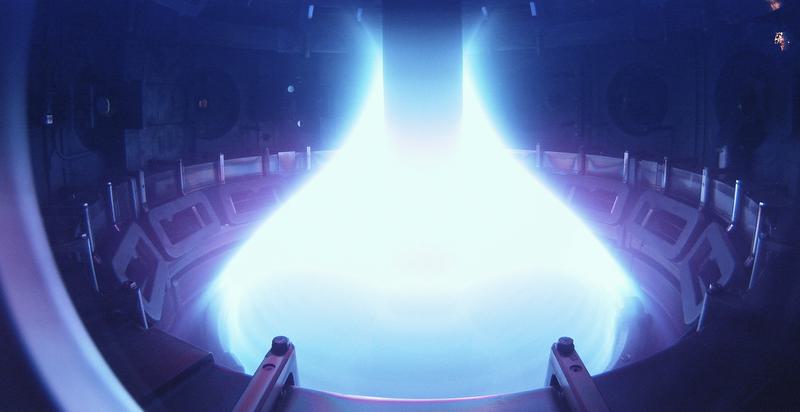
- 28 Sep 2025
In News:
- Researchers at the Institute for Plasma Research (IPR), Gandhinagar, have unveiled a comprehensive roadmap for India’s fusion energy programme.
- This initiative aims to develop the country’s first fusion electricity generator, Steady-state Superconducting Tokamak–Bharat (SST-Bharat), and ultimately commission a demonstration reactor by 2060.
- The roadmap signifies a major step in India’s pursuit of sustainable, high-yield, and low-waste energy alternatives.
Understanding Nuclear Fusion
Nuclear fusion is the process where two light atomic nuclei (like isotopes of hydrogen) merge to form a heavier nucleus, releasing immense energy—similar to the reactions that power the Sun.
It differs from nuclear fission, where heavy atoms split apart to release energy.
Advantages of Fusion over Fission
- Minimal radioactive waste and no long-term storage challenges.
- Abundant fuel sources (deuterium from water, tritium from lithium).
- No greenhouse gas emissions and no meltdown risk.
- High energy density, offering a virtually limitless energy source.
India’s Current Fusion Research Base
- SST-1 Tokamak (IPR, Gandhinagar): India’s first steady-state superconducting tokamak, designed for plasma research. It has achieved plasma duration of ~650 milliseconds, with potential to reach 16 minutes.
- Participation in ITER (France): India contributes technology, components, and funding to the International Thermonuclear Experimental Reactor (ITER), the world’s largest magnetic confinement experiment aimed at demonstrating a Q-value (output/input ratio) of 10.
India’s Fusion Power Roadmap
1. The SST-Bharat Project
- A fusion-fission hybrid reactor proposed as India’s next major milestone.
- Expected output: 130 MW (100 MW from fission, 30 MW from fusion).
- Estimated cost: ?25,000 crore.
- Efficiency target: Five times the input power.
- Acts as a bridge technology toward achieving pure fusion energy.
2. Demonstration Reactor (By 2060)
- Planned 250 MW full-scale reactor.
- Target Q-value: 20 (i.e., producing 20 times more energy than input).
- Will use magnetic confinement, heating plasma to over 100 million°C — much hotter than the Sun’s core (15 million°C).
Technological Innovations Proposed
- Digital Twinning: Creating virtual replicas of tokamak systems to test and optimise operations before physical construction.
- Machine Learning-Assisted Plasma Control: Using AI for real-time monitoring and stability of plasma.
- Radiation-Resistant Materials: Essential for reactor longevity and safety.
- Superconducting Magnet Development: To maintain continuous plasma confinement efficiently.
Global Benchmarks and India’s Position
|
Country/Programme |
Reactor/Initiative |
Target Year |
Notable Achievement |
|
UK |
STEP Programme |
2040 |
Prototype fusion power plant planned |
|
USA |
Private Start-ups |
2030s |
Early grid-connected fusion target |
|
China |
EAST Tokamak |
Ongoing |
Record plasma duration |
|
France |
WEST Tokamak |
2025 |
Maintained plasma for 22 minutes |
|
India |
SST-Bharat & Demo Reactor |
2060 |
Gradual, state-led development path |
While global players pursue faster timelines, India’s approach is cautious but strategic, focused on self-reliance and steady technological progress.
Challenges in India’s Fusion Path
Technological
- Sustaining stable plasma for long durations.
- Achieving Q > 1 (self-sustaining fusion).
- Developing durable superconducting magnets and radiation-resistant materials.
Financial
- High costs: SST-Bharat alone costs ?25,000 crore.
- Competing priorities: Solar, wind, and fission projects receive higher funding.
- Limited private-sector participation compared to global trends.
Policy and Governance
- Absence of a dedicated fusion energy regulatory framework.
- Need for integrated policy support under India’s Net Zero 2070 commitments.
Economic Viability
Experts like M.V. Ramana (University of British Columbia) caution that commercial fusion power remains economically unproven, and timelines are often optimistic. High R&D and construction costs could make fusion electricity expensive compared to renewables.
Strategic and Technological Significance
Even if commercial viability takes time, fusion R&D brings collateral benefits:
- Advances in plasma physics, superconducting technology, and high-temperature materials.
- Development of radiation-hardened components for defence, space, and nuclear industries.
- Strengthened technological autonomy and enhanced participation in global research networks.
Impatiens Selvasinghii
- 28 Sep 2025
In News:
- In a significant botanical discovery, researchers from Madura College, Madurai, have identified a new species of flowering plant belonging to the genus Impatiens in the Kudremukh range of the Western Ghats, Karnataka.
- The species has been named Impatiens selvasinghii in honour of Dr. P. Selva Singh Richard, Associate Professor of Botany at Madras Christian College (MCC), for his pioneering contributions to the study of reproductive biology of endemic and endangered plants of the Western Ghats.
Key Details of the Discovery
- Location:Kudremukh Peak, Chikkamagaluru district, Karnataka
- Altitude: Approximately 1,630 metres above sea level
- Published in:Taiwania, an international peer-reviewed botanical journal
- Unique Features: The species is distinguished by its exceptionally small flowers—the smallest among known balsams of the Western Ghats—and prominently lobed wing petals.
- Ecological Role: Small insects are dependent on this species for survival, underscoring its role in the local micro-ecosystem.
The Genus Impatiens in India
- India hosts over 280 taxa of Impatiens, widely distributed across the Eastern Himalayas and the Western Ghats.
- About 210 taxa are endemic to India, with 130 species unique to the Western Ghats.
- Notably, around 80% of the Impatiens species in the Western Ghats are categorized as endangered, highlighting the region’s ecological vulnerability.
Conservation Concerns
Researchers have cautioned that Impatiens selvasinghii is located along a popular trekking route in Kudremukh, where over-tourism and habitat disturbance could threaten its survival. Given the fragile mountain ecosystem and high endemicity of balsam species, measures for habitat protection and responsible ecotourism are vital.
Clean Plant Programme (CPP)
- 28 Sep 2025
In News:
- The Clean Plant Programme (CPP), conceptualized by the Ministry of Agriculture and Farmers Welfare in collaboration with the Asian Development Bank (ADB), is emerging as a transformative initiative aimed at ensuring healthy, disease-free planting material of key fruit crops.
- Approved by the Union Cabinet, CPP is implemented by the National Horticulture Board (NHB) with technical guidance from the Indian Council of Agricultural Research (ICAR).
Background and Rationale
India faces growing challenges to plant health from climate change, pests, and systemic pathogens, especially viruses, which significantly reduce crop quantity, quality, and longevity. By the time disease symptoms manifest, management in the field becomes difficult and often ineffective. Providing disease-free planting material has therefore been recognized as the most efficient preventive strategy.
CPP aligns with broader initiatives such as Mission LiFE (Lifestyle for Environment) and the National One Health Mission, promoting sustainable, eco-friendly agriculture and integrated management of human, animal, and environmental health risks.
Key Features of CPP
- For Farmers: Ensures access to virus-free, high-quality planting material to improve yields, income, and resilience against climate-induced pest and disease pressures.
- For Nurseries: Streamlined certification, infrastructure support, and technical guidance help nurseries propagate clean material efficiently.
- For Consumers: Delivers superior-quality fruits free from viruses, enhancing taste, appearance, and nutritional value.
- For Exports: Strengthens India’s global position by promoting high-quality, disease-free fruits.
- Equity and Inclusivity: Facilitates affordable access for all farmers, engages women in training and decision-making, and develops region-specific varieties for India’s diverse agro-climatic zones.
Investment and Implementation
CPP represents an investment of ?1,765.67 crore, including an ADB loan of $98 million. Key developments include:
- Nine Clean Plant Centres across India, including three in Maharashtra for grapes (Pune), oranges (Nagpur), and pomegranates (Solapur).
- Financial support for nurseries: ?3 crore for large nurseries and ?1.5 crore for medium nurseries. Expected annual production of 8 crore disease-free seedlings.
- Establishment of a national-level research laboratory in Pune for original plant species research.
- International collaboration with countries such as Israel and the Netherlands.
On-Ground Actions and Progress
- Hazard Analysis (HA): Virus profiling for grapevine, apple, and citrus crops, forming the foundation for Clean Plant Centers and certification.
- Nursery and Lab Assessments: NHB, ICAR, and ADB teams evaluated nurseries and laboratories across states for readiness, infrastructure, and bioinformatics capability.
- Clean Plant Propagation: Material testing, virus elimination through tissue culture, heat, or cryotherapy, and distribution through accredited nurseries to farmers.
- Digital and Resource Platforms: CPP website serves as a central hub for updates, resources, and technical guidance.
Alignment with Other Initiatives
- Mission LiFE: Encourages sustainable environmental practices and individual/community-level action to conserve natural resources.
- National One Health Mission: Integrates human, animal, and environmental health to manage disease risks and improve productivity.
- Mission for Integrated Development of Horticulture (MIDH): CPP complements MIDH’s goals of providing quality planting material and micro-irrigation to enhance horticultural productivity, which has increased from 12.10 MT/ha (2019–20) to 12.56 MT/ha (2024–25, 2nd advance estimates).
Industrial Park Rating System 3.0
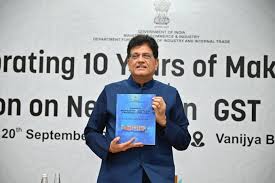
- 28 Sep 2025
In News:
- Recently, the Union Minister of Commerce and Industry, Shri Piyush Goyal, launched the Industrial Park Rating System (IPRS) 3.0 in New Delhi as part of the decade-long celebrations of the Make in India initiative.
- Developed by the Department for Promotion of Industry and Internal Trade (DPIIT) with support from the Asian Development Bank (ADB), IPRS 3.0 aims to benchmark and enhance the competitiveness of industrial parks across India.
Background and Evolution
The IPRS initiative began in 2018 as a pilot project, followed by IPRS 2.0 in 2021. The third edition builds upon these earlier versions by introducing a more comprehensive framework to assess industrial infrastructure, operational efficiency, and overall competitiveness.
Features of IPRS 3.0
IPRS 3.0 evaluates industrial parks based on multiple parameters, including:
- Sustainability and green infrastructure
- Logistics connectivity
- Digitalization
- Skill linkages
- Tenant feedback
Based on performance across these indicators, industrial parks are categorized into Leaders, Challengers, and Aspirers. This benchmarking enables stakeholders, including investors and policymakers, to access reliable and transparent data, identify best practices, and implement targeted interventions.
Significance for Industrial Development
The launch of IPRS 3.0 aligns with India’s broader strategy to create world-class industrial infrastructure. It provides States and Union Territories with an opportunity to:
- Showcase high-performing industrial parks
- Identify gaps for infrastructure improvement
- Attract domestic and foreign investments
- Generate employment
- Strengthen their industrial ecosystem
AI-enabled Centre at Betla National Park

- 27 Sep 2025
In News:
Betla National Park, located in Latehar district, Jharkhand, will soon host India’s first AI-enabled nature experience centre. Part of the Palamu Tiger Reserve (PTR), the park is known for its rich biodiversity, including tigers, elephants, and diverse flora and fauna. PTR is one of the first nine tiger reserves established under Project Tiger (1973), covering a total area of 1,129.93 sq. km, and was notified as a National Park in 1986.
About the AI-Enabled Centre
The centre, developed by Palamu Tiger Reserve authorities under Deputy Director Prajesh Kant Jena, aims to provide visitors with an immersive, high-tech wildlife experience. Unlike conventional nature interpretation centres, it will use cutting-edge technologies to recreate the dynamics of the jungle ecosystem, including:
- AI assistants for guided learning.
- 3D holographic projections to display lifelike animal behaviour.
- Augmented Reality (AR) and immersive sound effects to simulate waterfalls, bird calls, predator-prey interactions, and herd movements.
- Ecosystem simulation, portraying animal movement, food-sharing activities, and other natural behaviours in a realistic manner.
Purpose and Significance
The centre, themed “Threads of Nature,” is designed to convey the interconnection between humans and nature. Key objectives include:
- Enhancing eco-tourism by offering a realistic jungle experience, including sightings of tiger hunts, elephant herds, and lions.
- Promoting conservation awareness through interactive learning and observation tools.
- Supporting researchers and nature enthusiasts with virtual wildlife monitoring capabilities.
Unique Features
While nature interpretation centres have existed in Betla since the 1970s, this facility represents the first high-tech effort in India to integrate AI, AR/VR, holograms, and immersive sound for wildlife education. Visitors will not just see static models or photographs but will experience the sights, sounds, and atmosphere of a living jungle, providing a deeper understanding of ecosystem dynamics.
By merging technology with conservation education, the Betla AI-enabled centre is poised to become a pioneering hub for tourism, research, and ecological awareness in Jharkhand and across India.
Combined Operational Review and Evaluation (CORE) Programme

- 27 Sep 2025
In News:
- The Headquarters Integrated Defence Staff (HQ IDS) is organising the Combined Operational Review and Evaluation (CORE) Programme at the United Service Institution of India, New Delhi.
- The initiative serves as a unique platform for civil-military engagement on national and regional security, bringing together senior officers from the Indian Armed Forces alongside officials from the Ministries of Defence, External Affairs, and Home Affairs.
Objectives and Significance
The CORE Programme aims to:
- Strengthen civil-military synergy in addressing multidimensional security threats.
- Enhance strategic awareness among senior officers and develop their capacity for balanced, pragmatic decision-making.
- Foster leadership development and inter-agency coordination in complex national and international security scenarios.
The programme underscores HQ IDS’s commitment to jointness within the Armed Forces and professional development, preparing participants to navigate dynamic security challenges effectively.
Key Themes and Focus Areas
The CORE Programme covers a spectrum of contemporary security issues, including:
- Regional and global security challenges
- Technological transformation of warfare
- Strategic communication
- Inter-agency collaboration and joint problem-solving
The programme employs a combination of lectures, interactive discussions, and sessions with subject-matter experts and professionals from diverse fields. This approach broadens participants’ outlook, encourages collaborative solutions, and strengthens the intellectual foundations of senior leadership.
Participants
The five-day programme brings together senior civil and military officers, facilitating a holistic understanding of national security from multiple perspectives. By promoting dialogue across the defence and civilian sectors, CORE enhances preparedness to address complex, multidimensional threats at both national and international levels.
Phytosaur fossil
- 27 Sep 2025
In News:
Recent paleontological excavations in Megha village, Fatehgarh subdivision, Jaisalmer district, Rajasthan, have uncovered fossilised remains that may belong to a Phytosaur, a large, extinct semi-aquatic reptile. This discovery has generated significant excitement in the scientific community and reinforces Jaisalmer’s reputation as a paleontological hotspot.
About Phytosaurs
Phytosaurs are extinct reptiles of the order Phytosauria, resembling modern crocodiles, which thrived during the Late Triassic to Early Jurassic period. They displayed morphological diversity, including:
- Long-snouted forms (primarily fish-eating)
- Short-snouted forms (adapted for terrestrial prey)
- High-snouted forms (generalist feeders)
Phytosaur fossils have been reported in India, Europe, North America, Brazil, Morocco, Thailand, and Madagascar, highlighting their wide distribution and evolutionary significance.
Significance of the Find
The Megha village fossil adds to Jaisalmer’s growing list of paleontological finds, which includes dinosaur footprints, shark fossils, and marine remains. Experts suggest that the site may contain additional hidden fossils, which could provide crucial insights into:
- The evolution of prehistoric reptiles
- Convergent evolution with modern crocodilians
- Jurassic-era biodiversity and climate in India
If confirmed as a Phytosaur, the fossil will enhance our understanding of prehistoric fauna in the Indian subcontinent and strengthen the region’s global paleontological significance.
Striped Dolphin
- 27 Sep 2025
In News:
- In a rare observation, a pod of striped dolphins (Stenella coeruleoalba) was recently sighted off the Visakhapatnam coast in Andhra Pradesh.
- The sighting, captured on video by a local fisherman from Muthyalammapalem, has drawn attention to the rich but under-documented marine biodiversity of India’s eastern coastline.
- The species was identified by the East Coast Conservation Team (ECCT) with assistance from the Marine Mammal Research and Conservation Network of India — marking one of the few verified records of striped dolphins in Andhra waters.
About Striped Dolphins (Stenella coeruleoalba)
|
Aspect |
Details |
|
Family |
Delphinidae (Oceanic dolphins) |
|
IUCN Status |
Least Concern |
|
Distribution |
Found in tropical and temperate waters of all major oceans — including the Mediterranean Sea, Japan, South Africa, Western Australia, New Zealand, and occasionally, Indian waters. |
|
Habitat |
Prefer deep offshore waters and upwelling zones where nutrient-rich cold water supports abundant marine life. Often found near continental shelf edges. |
|
Physical Features |
Length: ~2.2–2.6 m; streamlined body; long beak (rostrum); tall, curved dorsal fin. Notable dark stripes run from the beak through the eye and down the sides, giving the species its name. |
|
Behaviour |
Found in tight pods of 25–100 individuals. Known for acrobatics such as breaching, leaping, and the characteristic “roto-tailing” — a spinning motion of the tail while airborne. |
|
Lifespan |
Up to 58 years. |
|
Diet |
Primarily small fish, squid, and crustaceans. |
Ecological and Conservation Significance
The recent sighting highlights the ecological richness of the Bay of Bengal, especially the Visakhapatnam coast, which supports diverse marine fauna but remains scientifically under-surveyed.
Such sightings are crucial for:
- Enhancing knowledge about the migratory patterns and population structure of marine mammals in Indian waters.
- Assessing ecosystem health, since dolphins are indicator species reflecting the condition of marine food chains.
- Formulating regional conservation policies for marine biodiversity and sustainable fisheries.
The ECCT’s collaboration with fishermen exemplifies a community-based conservation model, where local knowledge complements formal scientific documentation — essential for protecting fragile marine ecosystems.
Recent Discoveries Indicating Biodiversity Potential
During recent coastal surveys, researchers even rediscovered a sea slug species in Visakhapatnam that had not been recorded in nearly 180 years, further proving the hidden biodiversity of India’s east coast and the urgent need for systematic monitoring.
Protecting India’s Satellites

- 27 Sep 2025
In News:
Following a near-miss incident in 2024 between an Indian satellite and a foreign spacecraft, India has intensified efforts to protect its growing constellation of satellites. Given the critical role of satellites in national security, communication, and economic infrastructure, safeguarding them has become a strategic necessity.
Why Protecting Satellites is Crucial
India’s satellites are vital for a range of civilian and defence functions — from weather forecasting and navigation (NavIC) to internet services, surveillance, and global communications. They underpin sectors such as aviation, shipping, agriculture, and disaster management, while also enabling secure military operations.
However, these assets face increasing threats:
- Space debris and collisions — The expanding number of satellites and fragments in orbit raises the risk of accidental impacts.
- Hostile manoeuvres — Adversarial satellites may shadow or interfere with India’s space assets.
- Cyber threats — Ground stations and networks remain susceptible to hacking, jamming, and spoofing.
- Solar storms and space weather — Events like coronal mass ejections can damage satellite electronics and disrupt signals.
With the high costs of launching and maintaining satellites, ensuring their safety protects India’s technological investment and strategic autonomy.
India’s Ongoing and Planned Initiatives
- IS4OM (ISRO System for Safe and Sustainable Space Operations and Management): Located in Bengaluru, this centre continuously tracks India’s satellites and provides collision-avoidance alerts, enabling timely orbital manoeuvres to prevent accidents.
- Project NETRA (Network for Space Object Tracking and Analysis): An ambitious space surveillance system comprising radars and telescopes to build indigenous Space Situational Awareness (SSA) capabilities. It will allow India to monitor space debris and detect suspicious satellite movements in real-time.
- Aditya-L1 Mission: India’s first solar observatory mission monitors solar storms and radiation patterns, providing early warnings about solar events that could threaten satellite operations.
- ?27,000-crore Surveillance Satellite Programme (2026–2032): India has approved the launch of 52 surveillance satellites to strengthen real-time observation, border monitoring, and space domain awareness — forming the backbone of future space defence capabilities.
- CERT-In Satellite Cybersecurity Guidelines (2025): New cybersecurity protocols mandate strong encryption, network segmentation, and data protection norms to prevent satellite hacking or signal spoofing.
- IN-SPACe Licensing and Regulation: Private players are now integrated into India’s space ecosystem, but under strict safety and cybersecurity standards to ensure the security of the commercial space sector.
- Debris-Free Space Mission (By 2030): Announced at the Inter-Agency Space Debris Coordination Committee (IADC) in 2024, India has pledged to adopt sustainable space practices and avoid debris creation during launches and operations.
Emerging Plan: “Bodyguard Satellites”
India is reportedly considering deploying bodyguard satellites — specialised spacecraft that will act as orbital escorts for high-value satellites.
Functions and Features:
- Proximity monitoring: Detect when debris or foreign satellites come dangerously close.
- Threat identification: Track hostile proximity operations or suspicious manoeuvres.
- Protective action: Reposition themselves or guide the protected satellite to avoid collisions or interference.
- Strategic deterrence: Aligns India with global trends where major space powers (like the US, Russia, and China) are deploying similar defensive technologies.
Challenges:
- Technological: Requires advanced sensors, AI-driven autonomy, and ultra-precise orbital manoeuvring systems.
- Financial: High development and launch costs demand sustained investment.
- Cybersecurity: Satellite-ground communication remains a potential vulnerability.
- Geopolitical: May trigger suspicion or an arms race in outer space.
- Sustainability: Increased orbital activity must not worsen the space debris problem.
Way Forward
- Strengthen indigenous SSA: Invest in LiDAR, radar, and optical satellite networks to monitor all orbital zones.
- Enhance anti-jamming and encryption systems: Build resilient, autonomous communication systems immune to interference.
- Public–Private Collaboration: Encourage startups and private firms to co-develop low-cost, high-tech satellite protection tools.
- Global cooperation: Engage actively with international bodies like COPUOS and IADC to promote transparency and responsible behaviour in space.
- Defensive-first approach: Focus on non-weaponised, sustainable defence mechanisms to maintain peace and prevent escalation in outer space.
World’s 1st Functioning AI-designed Viral Genome
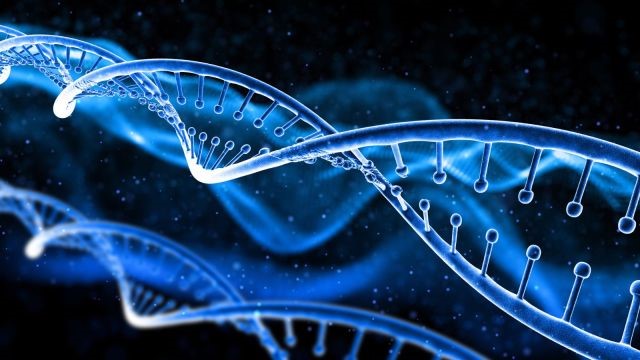
- 26 Sep 2025
In News:
Scientists at Stanford University and the Arc Institute have created the world’s first artificially designed viral genome using Artificial Intelligence (AI), marking a major milestone in computational biology and synthetic genomics. The breakthrough demonstrates AI’s capability to generate an entirely new and functional virus—one that can infect and kill bacteria.
About the Discovery
The AI-generated virus was designed using a genomic model called Evo, which functions like a “language model” for DNA. Evo was trained on nearly two million viral genomes, learning the patterns and grammar of genetic sequences—akin to how language models learn human syntax and semantics.
The model was guided to mimic the bacteriophage ΦX174 (phi-X-174), a virus that infects E. coli bacteria. This phage was chosen because:
- It has a small yet complex genome (about 5,386 DNA letters and 11 overlapping genes).
- It was the first genome ever sequenced (1977) and the first synthesized from scratch (2003)—now it is the first AI-designed genome.
How It Was Done
- Training the AI: Evo was trained on millions of viral sequences to understand gene order, composition, and regulatory logic.
- Design Phase: Using prompts, Evo generated thousands of potential genome designs.
- Screening & Testing: Researchers filtered these using software checks to ensure each genome contained the necessary genes and functional proteins.
- Lab Validation: Hundreds of genomes were synthesized and inserted into E. coli bacteria. Out of 302 attempts, 16 fully functional viruses emerged.
- Results:
- These viruses contained over 392 mutations never seen in nature.
- Some designs achieved functions human scientists had failed to engineer, such as borrowing DNA-packaging proteins from unrelated viruses.
- Cryo-electron microscopy confirmed the structural integrity of these AI-designed proteins within the viral shell.
What is a Virus?
A virus is a microscopic infectious agent made of nucleic acid (DNA or RNA) enclosed within a protein coat (capsid).
- It cannot replicate independently and must hijack a host cell’s machinery to reproduce.
- Many viruses cause diseases like COVID-19, AIDS, measles, and smallpox.
What is a Genome?
The genome is the complete set of DNA instructions in an organism.
- In humans, it comprises 23 pairs of chromosomes in the nucleus plus mitochondrial DNA.
- It encodes all genetic information required for growth, development, and functioning.
Significance of the Breakthrough
- Redefining Synthetic Biology:The experiment represents a leap from reading and writing genomes to designing them. AI is now capable of generating entirely new, functional genetic blueprints.
- Advancing Phage Therapy:The AI-designed bacteriophages could revolutionize phage therapy—the use of viruses to target and kill antibiotic-resistant bacteria, a major global health threat.
- Accelerating Biotechnology:This development showcases how AI can drastically accelerate genetic innovation, enabling rapid design and testing of new biological entities.
- Proof of Concept for AI-Driven Evolution:AI-generated viruses adapted to bacterial defenses faster than natural ones, indicating potential for directed evolution through computational models.
- Ethical and Regulatory Implications:While promising, the creation of new synthetic organisms underscores the need for global biosafety, biosecurity, and ethical frameworks to govern AI-driven genetic design.
High Seas Treaty of UN Reaches Entry into Force Threshold
- 26 Sep 2025
In News:
- The Biodiversity Beyond National Jurisdiction (BBNJ) Treaty, also known as the UN High Seas Treaty, has crossed the crucial threshold of 60 ratifications, enabling it to enter into force on January 17, 2026. With Morocco and Sierra Leone becoming the 60th and 61st ratifying nations, this milestone marks a historic step in the global conservation of marine biodiversity in international waters.
- So far, 143 countries, including India, have signed the treaty, reflecting strong international consensus on protecting marine ecosystems that lie beyond national boundaries.
About the BBNJ Treaty
- Full Name:Agreement under the United Nations Convention on the Law of the Sea on the Conservation and Sustainable Use of Marine Biological Diversity of Areas Beyond National Jurisdiction (BBNJ).
- Parent Framework: Builds upon the UN Convention on the Law of the Sea (UNCLOS), adopted in 1982 and effective since 1994 — often called the “Constitution for the Oceans”.
- Geographical Scope: Applies to areas beyond 200 nautical miles from the Exclusive Economic Zones (EEZs) of coastal nations, commonly referred to as the high seas.
- Coverage: These high seas account for nearly two-thirds of the global ocean and cover over 70% of the Earth’s surface, yet currently, only 1.44% are under any form of protection.
Objectives and Key Provisions
The BBNJ Treaty seeks to conserve and sustainably use marine biodiversity in areas beyond national jurisdiction through legally binding measures. Its major provisions include:
- Creation of Marine Protected Areas (MPAs):
- Aims to designate and manage MPAs in international waters.
- Currently, 6.35% of the ocean is protected, with only 1.89% designated as no-take MPAs, where all extractive activities such as fishing, mining, and drilling are prohibited.
- This aligns with the Kunming-Montreal Global Biodiversity Framework target of protecting 30% of global land and sea areas by 2030 (30x30 goal).
- Equitable Sharing of Marine Genetic Resources (MGRs):
- Establishes mechanisms to ensure fair and equitable distribution of benefits derived from marine genetic resources — biological materials such as microorganisms, plants, and animals with applications in pharmaceuticals and biotechnology.
- Mandatory Environmental Impact Assessments (EIAs):Mandates EIAs for high-impact activities like deep-sea mining, carbon sequestration, and bioprospecting in international waters to mitigate potential ecological harm.
- Scientific Cooperation and Technology Transfer:Encourages capacity building, data sharing, and technology transfer to support developing nations in ocean research and sustainable marine resource management.
Process for the Treaty’s Entry into Force
- Condition: The BBNJ Treaty enters into force 120 days after the deposit of the 60th instrument of ratification, approval, or accession.
- Implementation Date: Given the 60th ratification milestone was achieved in September 2025, the treaty will legally come into effect on January 17, 2026.
- Next Steps:
- Preparatory Commission (PrepCom): Tasked with operationalizing the treaty by establishing scientific and technical bodies, expert qualifications, and procedural frameworks for reviewing MPA proposals.
- First Conference of Parties (COP1): Will convene post-entry into force to initiate formal implementation. Key agenda items include governance mechanisms, financial arrangements, and the Clearing-House Mechanism for information exchange.
India’s Role and Strategic Interests
- India’s Involvement:
- The Union Cabinet approved India’s signing of the BBNJ Treaty in July 2024.
- India is among the 143 signatories, signaling commitment to sustainable ocean governance.
- Strategic Significance for India:
- Enhanced Oceanic Presence: Expands India’s strategic and scientific footprint beyond its Exclusive Economic Zone (EEZ).
- Scientific Research: Facilitates participation in global marine research, access to marine genetic resources, and technological collaboration.
- Alignment with SDG-14: Advances India’s commitment to Sustainable Development Goal 14 – “Life Below Water”, which seeks to conserve and sustainably use ocean resources.
- Diplomatic and Environmental Leadership: Positions India as a responsible stakeholder in global commons management and strengthens its environmental diplomacy credentials.
Assessment of Logistics Cost in India

- 26 Sep 2025
In News:
- On the occasion of a decade of “Make in India”, the Union Minister of Commerce and Industry, Shri Piyush Goyal, launched the report on Assessment of Logistics Cost in India in September 2025.
- This marks the first scientifically derived national estimate of logistics costs, aligning with the objectives of the National Logistics Policy (NLP), 2022, to make India’s logistics sector globally competitive, data-driven, and cost-efficient.
About the Report
- Prepared by: Department for Promotion of Industry and Internal Trade (DPIIT) and the Department of Commerce.
- Methodology: Uses a hybrid approach, combining secondary data analysis with nationwide enterprise surveys to ensure scientific estimation.
- Objective: To establish a uniform national framework for measuring logistics costs and benchmarking them with global standards, in line with the NLP (2022).
Key Findings
- Logistics Cost Estimate (2025): Around 7.97% of India’s GDP.
- Previous Estimates: Older, often-cited figures of 13–14% of GDP were based on partial or external datasets, leading to inconsistent policy assessments.
- Trend Analysis: Over the past five years, logistics cost growth has slowed relative to non-services output, indicating improved sectoral efficiency.
Significance
This assessment provides evidence-based guidance for:
- Policy formulation on logistics modernization.
- Competitiveness enhancement of Indian exports.
- Strategic inputs for Free Trade Agreement (FTA) negotiations through the mapping of HSN codes to respective ministries.
- Development of logistics data banks and state logistics plans under the SMILE Programme (with ADB support).
Achievements and Improvements in India’s Logistics Sector
- Improved Global Ranking:India ranked 38th out of 139 countries in the 2023 World Bank Logistics Performance Index (LPI), up by six positions from 2018.
- Infrastructure Expansion:
- Cargo through Inland Waterways (2024–25):145.5 million tonnes.
- Operational National Waterways: Increased from 24 to 29.
- Digital Integration:
- Unified Logistics Interface Platform (ULIP): Consolidates logistics data across ministries, recording over 100 crore API transactions (2025).
- Facilitates end-to-end visibility and efficiency in multimodal logistics.
- Human Resource Development:Gati Shakti Vishwavidyalaya (GSV): India’s first logistics-focused university, has signed 40 MoUs with industry and academia to develop skilled manpower for transport and supply chain sectors.
Key Government Initiatives Driving Efficiency
1. PM GatiShakti National Master Plan (2021)
- Integrates 57 ministries/departments and all States/UTs on a digital GIS platform.
- Enables coordinated infrastructure planning acrossroads, railways, ports, airports, and inland waterways.
2. Dedicated Freight Corridors (DFCs)
- Two major DFCs under development by Indian Railways to:
- Ease congestion on passenger routes.
- Reduce freight cost and transit time.
- Improve energy efficiency and modal balance.
3. Multi-Modal Logistics Parks (MMLPs)
- 35 strategic locations approved (e.g., Chennai, Bengaluru, Nagpur, Indore).
- Five parks expected to become operational by 2027, promoting multimodal transport and value-added logistics services.
4. Maritime Amrit Kaal Vision 2047
- Long-term blueprint aligned with Blue Economy principles.
- Focuses on shipbuilding, coastal tourism, port-led development, and maritime skill-building to position India as a global maritime hub.
5. Sustainability and Green Initiatives
- Freight GHG Calculator: Estimates and compares transportation emissions to support eco-friendly logistics decisions.
- Rail Green Points: Helps freight customers assess carbon savings when using rail instead of road transport.
Challenges in India’s Logistics Sector
- High Logistics Cost (Legacy Issue): Historically estimated at 13–14% of GDP—higher than global benchmarks (8–9%).
- Infrastructure Gaps: Deficiency in warehousing, cold chain, and last-mile connectivity.
- Overdependence on Road Transport: Causes congestion, higher costs, and carbon emissions.
- Limited Multimodal Integration: Underutilization of railways and inland waterways for freight.
- Environmental Impact: Diesel-based trucking remains a major source of logistics-related emissions.
Objectives of the National Logistics Policy (NLP) 2022
- Reduce logistics cost to below 10% of GDP.
- Improve India’s LPI ranking to Top 25 by 2030.
- Build a robust, data-driven logistics decision-support system.
- Promote multimodal connectivity, sustainability, and ease of doing business.
Way Forward
- Integrated Infrastructure: Expansion of GatiShakti corridors and MMLPs to enable seamless multimodal movement.
- Digital Logistics Ecosystem: Wider adoption of ULIP, AI-driven route optimization, and e-logistics tracking.
- Green Logistics: Shift towards rail and waterways, adoption of electric and LNG-based freight vehicles, and GHG monitoring tools.
- Skill Development: Strengthening logistics education via GSV and industrial-academic partnerships.
- Policy Consistency: Periodic, data-backed cost assessments to guide long-term logistics and trade policy decisions.
Super Typhoon Ragasa

- 26 Sep 2025
In News:
Super Typhoon Ragasa—locally known as Nando—has emerged as one of the most powerful storms to strike Southeast Asia in recent years. With sustained winds exceeding 200 km/h and gusts up to 250 km/h, it has prompted large-scale shutdowns across the Philippines and Hong Kong, highlighting the region’s vulnerability to climate-induced extreme weather events.
About Super Typhoon Ragasa
- Category: 5 (the highest on the Saffir-Simpson scale)
- Wind Speed: Sustained winds of around 205 km/h, gusting up to 250 km/h.
- Origin: Formed over the western Pacific Ocean, where warm sea surface temperatures and low wind shear facilitated rapid intensification.
- Track: Moving northwestward across the Luzon Strait, impacting the Babuyan Islands in northern Philippines before heading toward southern China, including Hong Kong.
Regional and Environmental Significance
- The increasing intensity of storms like Ragasa reflects the broader pattern of climate change-driven extreme weather in the western Pacific region.
- Rising sea surface temperatures and shifting atmospheric circulation patterns have led to more frequent and severe typhoons, posing long-term challenges to disaster preparedness and coastal infrastructure resilience in densely populated regions like Luzon and Hong Kong.
Way Forward
- Strengthening Early Warning Systems: Enhanced forecasting and community-based alert dissemination can save lives in coastal and island regions.
- Climate Adaptation Infrastructure: Investment in storm-resilient housing, flood barriers, and sustainable urban planning is critical for mitigating recurring damage.
- Regional Cooperation: Shared meteorological data and coordinated disaster response among ASEAN nations, China, and Pacific island states can improve resilience.
Supercomputers vs Normal Computers
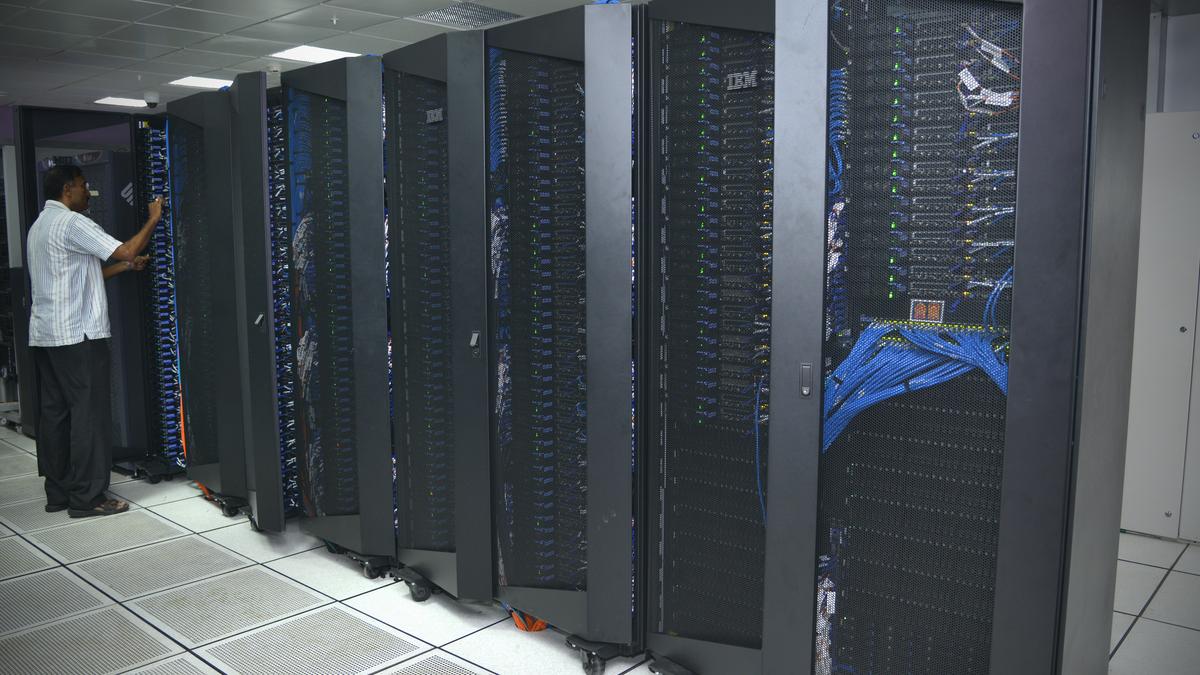
- 26 Sep 2025
In News:
Supercomputers are the giants of the computing world, built to solve problems far beyond the reach of everyday computers. Unlike normal laptops or desktops, which are designed for routine tasks like web browsing, office work, gaming, or media consumption, supercomputers tackle extremely complex, data-intensive problems—such as weather forecasting, simulating nuclear reactions, modelling the early universe, or training advanced artificial intelligence models.
Key Differences Between Normal Computers and Supercomputers
|
Aspect |
Normal Computers |
Supercomputers |
|
Processing Power |
Billions of operations per second (GFLOPS) |
Quintillions per second (ExaFLOPS); can complete tasks that would take ordinary machines years in just hours |
|
Architecture |
1–16 CPU cores |
Thousands to millions of CPUs and GPUs working in parallel |
|
Memory & Storage |
GB–TB range |
Petabyte-scale storage with parallel file systems |
|
Networking |
Standard Ethernet or Wi-Fi |
Ultra-fast interconnects like InfiniBand or Omni-Path |
|
Cooling & Power |
Small fans, low power consumption |
Liquid or immersion cooling; power requirements comparable to a small town |
|
Use & Access |
Direct individual use |
Remote access via job schedulers for research institutions and industrial applications |
India’s Supercomputing Initiative
- India’s journey in high-performance computing began in the late 1980s, largely as a response to export restrictions from Western countries. This led to the development of indigenous supercomputing capabilities under the National Supercomputing Mission (NSM).
- The mission has given rise to the PARAM series and the newer AIRAWAT supercomputers, positioning India on the global high-performance computing map.
- These systems are designed not just for academic research but also for solving real-world problems in climate modelling, healthcare simulations, and energy research. They exemplify India’s strategic approach to technological self-reliance and digital sovereignty.
Global Supercomputing Race
- Supercomputing has become a key area of technological competition. In Europe, Germany recently commissioned JUPITER, the continent’s first exascale supercomputer, capable of performing more than an exaFLOP (a quintillion calculation per second). This milestone highlights the global drive toward faster, more energy-efficient, and scalable computing infrastructures, with countries investing heavily in next-generation architectures.
Significance for India
For India, supercomputers are not only tools for scientific advancement but also instruments of national development. They support critical sectors such as meteorology, disaster management, nuclear research, and artificial intelligence, enhancing both strategic and developmental capacities. The NSM’s growing network of high-performance machines demonstrates India’s commitment to bridging the technological gap with global leaders.
Evo AI Model
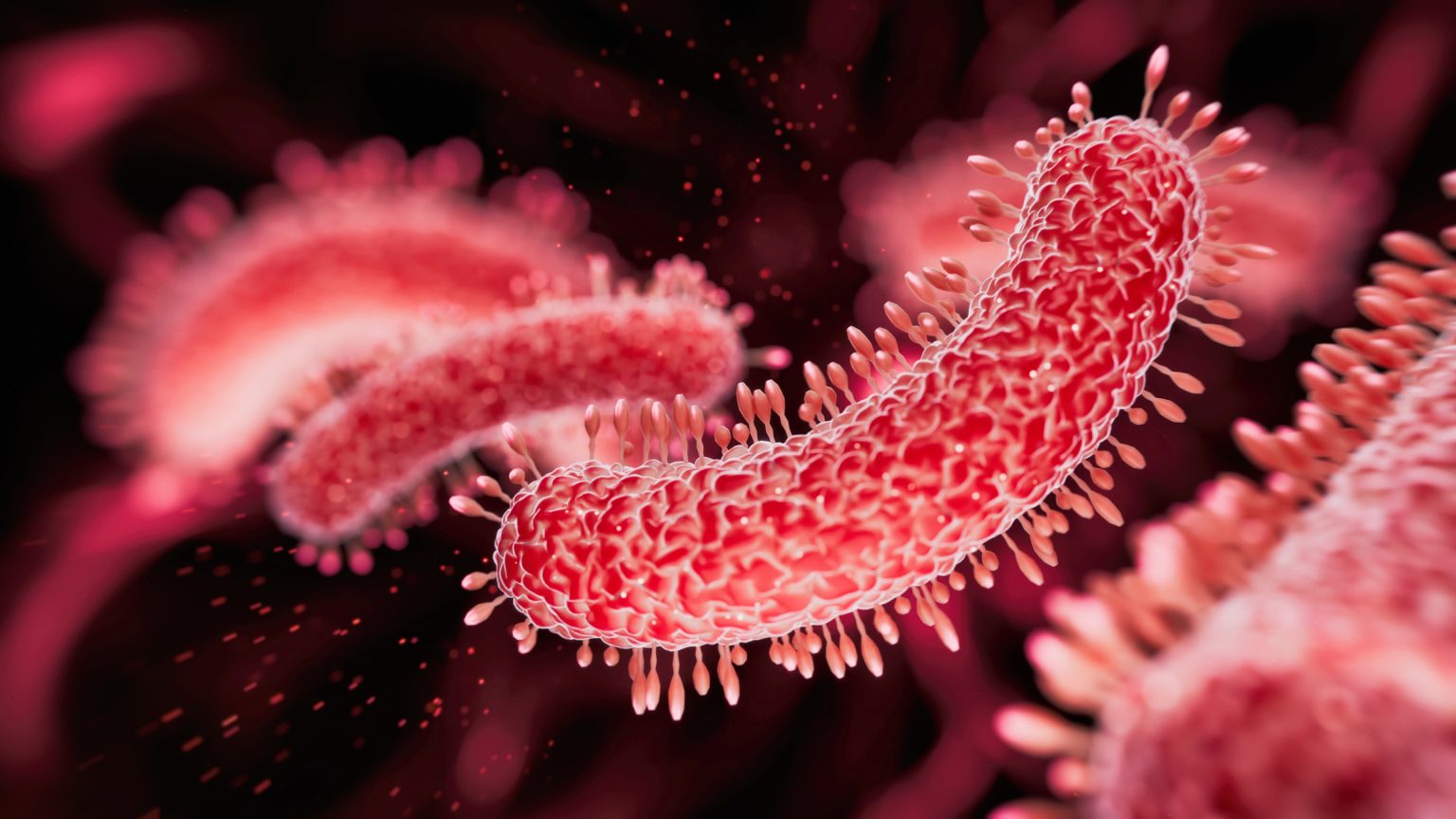
- 25 Sep 2025
In News:
- In a groundbreaking scientific development, researchers at Stanford University, in collaboration with the Arc Institute, have used artificial intelligence (AI) to design viruses capable of killing harmful bacteria.
- This breakthrough offers a potential solution to the global antibiotic resistance crisis and marks a significant advance in AI-guided synthetic biology.
The Challenge of Antibiotic Resistance
- Antimicrobial resistance (AMR) is a growing global health threat. According to the World Health Organization (WHO), AMR is among the top public health and development challenges, contributing to an estimated 1.27 million deaths globally in 2019 and playing a role in 4.95 million deaths.
- In India alone, around 6 lakh lives are lost annually due to drug-resistant infections. Traditional antibiotics are increasingly ineffective, necessitating novel approaches to combat bacterial diseases.
- Bacteriophages, or viruses that specifically target bacteria, provide a promising alternative. Unlike antibiotics, phages attack specific bacterial strains, sparing beneficial microbes. However, engineering or identifying effective phages has historically been slow and labor-intensive.
AI Breakthrough: The Evo Model
To accelerate this process, scientists developed Evo, a large AI model for genomics, described as a “ChatGPT for DNA”. Evo was trained on 80,000 microbial genomes and millions of bacteriophage and plasmid sequences, encompassingapproximately 300 billion nucleotides.
Key Features of Evo:
- Foundation Model for Genomics: Predicts, designs, and generates genetic code for synthetic biology applications.
- Generative Capability: Creates novel viral blueprints, synthetic genomes, and protein variants (e.g., Cas9 variants).
- Extended Context Length: Understands long DNA sequences and gene interactions.
- High Precision: Operates at nucleotide-level resolution.
- Accelerated R&D: Reduces decades of trial-and-error lab work to weeks.
- Open Research: Publicly available for non-commercial academic use.
How the AI-Designed Viruses Were Created
- Selection of Model Virus: Scientists chose phiX174, a simple virus infecting E. coli, due to its well-characterized genome (11 genes) and manageable complexity.
- AI Training: Evo analyzed millions of viral sequences, learning gene structures and functional combinations that could enhance antibacterial activity.
- Generative Design: The AI proposed hundreds of new virus variants predicted to attack bacteria effectively.
- Laboratory Synthesis: Researchers synthesized the AI-designed genomes and tested them in the lab. 16 new viruses successfully infected and destroyed bacteria, with some performing better than natural counterparts.
Significance of the Discovery
- Rapid Innovation: AI accelerates phage design, shrinking decades of research into weeks.
- Targeted Therapy: Offers precision treatments against drug-resistant bacterial infections.
- Agricultural and Clinical Applications: Potential to safeguard human health, hospitals, and food production from bacterial threats.
- Scientific Implications: Raises philosophical and biological questions about AI’s ability to create life-like entities, as viruses, while not strictly “alive,” mimic key life processes.
Safety and Ethical Considerations
Experts caution that AI-designed viruses, if misused or released unintentionally, could pose biosecurity risks. While engineering harmful human viruses is highly complex, the possibility of accidental creation of dangerous pathogens calls for strict safety protocols, oversight, and ethical guidelines. Responsible research is essential to ensure societal benefit while minimizing risk.
Logistics Ease Across Different States (LEADS) 2025

- 25 Sep 2025
In News:
The Union Minister for Commerce and Industry, launched Logistics Ease Across Different States (LEADS) 2025 in New Delhi as part of the decade-long celebrations of the Make in India initiative. The launch marks a major step in India’s efforts to create a globally competitive, efficient, and sustainable logisticsecosystem, integral to achieving the goals of Atmanirbhar Bharat and Viksit Bharat 2047.
About LEADS 2025
- Logistics Ease Across Different States (LEADS) is a national index and survey developed by the Department for Promotion of Industry and Internal Trade (DPIIT) under the Ministry of Commerce and Industry.
- It aims to benchmark and rank the logistics performance of Indian States and Union Territories, providing actionable insights to improve supply chain efficiency and reduce logistics costs.
Objectives
- To evaluate and compare logistics performance across States and UTs.
- To identify best practices and policy gaps for targeted reforms.
- To guide infrastructure planning and capacity building for logistics improvement.
- To support Make in India by enhancing logistics competitiveness and reducing costs.
Key Features of LEADS 2025
- Corridor Performance Tracking
- Assessment of 5–7 key national logistics corridors based on journey time, truck speed, and waiting periods.
- Provides a data-driven evaluation of corridor efficiency.
- API-Enabled Real-Time Data
- Introduces API-based analytics to evaluate section-wise speeds on major road corridors.
- Offers sharper insights into congestion points and logistics bottlenecks.
- State Rankings &Categorisation: States and UTs are ranked under Leaders, Achievers, and Aspirers categories to encourage healthy competition and policy innovation.
- Digital Dashboard: A new interactive monitoring platform allows States and UTs to track performance and progress in real time.
- Policy Recommendations: The survey provides customised state-level action plans to address infrastructure, service, and regulatory gaps.
Assessment Parameters
LEADS evaluates States and UTs on five major dimensions:
- Infrastructure Quality – Roads, warehousing, multimodal connectivity.
- Service Quality – Availability, reliability, and performance of logistics providers.
- Efficiency – Timeliness, truck turnaround time, and ease of clearances.
- Policy and Regulatory Support – State-level facilitation measures and grievance redressal mechanisms.
- Stakeholder Perception – Industry feedback on cost, speed, and reliability of logistics operations.
Papikonda National Park
- 25 Sep 2025
In News:
A recent study published in the Records of the Zoological Survey of India has documented 51 species of herpetofauna — including amphibians and reptiles — in Papikonda National Park, located in the northern part of the Eastern Ghats, Andhra Pradesh. This comprehensive survey marks a significant step in understanding the region’s biodiversity, which has remained largely underexplored.
Key Findings of the Study
Researchers recorded 18 amphibians, 21 lizards, 10 snakes, and 2 turtles through extensive fieldwork conducted between September 2021 and February 2023. The study revealed three species — Minervaryakalinga, Sphaerothecamaskeyi, and Hemidactylus kangerensis — reported for the first time in Andhra Pradesh.
According to the IUCN Red List (2024):
- 46 species are listed as Least Concern,
- 3 species are Not Yet Assessed,
- Hemidactylus kangerensis is Endangered, and
- Lissemyspunctata is Vulnerable.
Under the Wildlife (Protection) Act, 2022, several species enjoy legal protection:
- Schedule I:Chamaeleozeylanicus, Calodactylodes aureus, Pangshura tentoria, Lissemyspunctata
- Schedule II:Hoplobatrachustigerinus, Euphlyctiscyanophlyctis
The study also highlighted rare species such as Psammodynastespulverulentus and Argyrophisdiardii, the latter recorded for the first time in the Eastern Ghats. Two Eastern Ghats endemics — the Indian golden gecko (Calodactylodes aureus) and Dutta’s Mahendragiri gecko (Hemidactylus sushilduttai) — were also documented.
About Papikonda National Park
- Location: East and West Godavari districts, Andhra Pradesh
- Area: Approximately 1,012.86 sq km
- Established: Declared a Reserved Forest (1882), Wildlife Sanctuary (1978), and upgraded to National Park (2008)
- Landscape: Rugged terrain of the Eastern Ghats, divided by the Godavari River, with elevation ranging from 20–850 metres
- Geographical Features: Contains 62 named mountains, including Devara Konda (highest point) and Verala Konda (most prominent peak)
- Recognition: Identified as an Important Bird and Biodiversity Area (IBA) by BirdLife International
Flora and Fauna
- Vegetation: Tropical moist deciduous, semi-evergreen, and dry deciduous forests.
- Flora: Teak, rosewood, sandalwood, bamboo, sal, mahua, pterocarpus, terminalia, cassia, and eucalyptus.
- Fauna: Bengal tiger, Indian leopard, sloth bear, dhole (wild dog), sambar, and spotted deer.
- Unique Feature: Home to the “KanchuMekha”, a rare dwarf goat breed native to the region.
Conservation Significance
- The study provides baseline data crucial for biodiversity conservation and monitoring in the Eastern Ghats. Researchers warned that herpetofaunal populations face multiple threats — including habitat loss, fragmentation, emerging diseases, and climate change.
- Rare and threatened species like the Jeypore Hill Gecko (Geckoellajeyporensis), Barkud Spotted Skink (Barkudiainsularis), and King Cobra (Ophiophagus hannah) emphasize the need for targeted conservation strategies.
- The authors advocated for systematic surveys and integrated taxonomic approaches across the Eastern Ghats to enhance understanding of species distribution and to strengthen regional conservation planning.
Exercise Amogh Fury
- 25 Sep 2025
In News:
The Indian Army’s Sapta Shakti Command recently conducted a major integrated firepower exercise, ‘Amogh Fury’, at the Mahajan Field Firing Ranges in Rajasthan’s Thar Desert. The large-scale drill showcased the Army’s growing emphasis on technology-driven warfare, jointness of combat arms, and preparedness for multi-domain operations.
Objectives and Significance
- The primary aim of Exercise Amogh Fury was to test combat power, coordination, and operational readiness under realistic battlefield conditions.
- The exercise simulated live battle scenarios, enabling forces to validate their capabilities in offensive and defensive operations, while ensuring seamless integration between ground and air platforms.
- The drill reflected the Army’s commitment to operational transformation in line with evolving security dynamics, focusing on rapid decision-making, situational awareness, and integrated command structures.
Key Features of the Exercise
The exercise featured coordinated manoeuvres involving:
- Battle Tanks and Infantry Combat Vehicles – for armoured and mechanised warfare.
- Attack Helicopters and Long-Range Artillery – providing precision firepower support.
- Drones and Unmanned Aerial Systems (UAS) – for real-time reconnaissance, surveillance, and target acquisition.
These diverse platforms operated in unison to demonstrate jointness between air and ground forces, vital for modern high-intensity conflicts.
Integration of Advanced Technologies
A central focus of Amogh Fury was the use of modern technologies such as:
- Network-centric communication systems
- Integrated Command-and-Control (C2) architecture
- Real-time surveillance and targeting systems
These advancements allowed for the creation of a unified operational picture, enhancing situational awareness, rapid coordination, and decision-making across command levels. The integration of these systems reflects the Army’s move toward digitised battlefield management and multi-domain warfare capability.
Training and Outcomes
The exercise provided pragmatic training for personnel across all ranks under realistic combat conditions. It served as a testbed for refining tactical procedures and assessing the synergy between combat arms, support units, and logistic elements.
Through Amogh Fury, the Indian Army strengthened its readiness to counter emerging threats, underscoring its focus on agility, precision, and technological superiority on the modern battlefield.
DadasahebPhalke Award for 2023
- 25 Sep 2025
In News:
In a major recognition of artistic excellence, the Government of India has announced that legendary actor, director, and producer Shri Mohanlal Viswanathan Nair will be conferred with the DadasahebPhalke Award for the year 2023, the highest honour in Indian cinema.
About the DadasahebPhalke Award
The DadasahebPhalke Award is India’s highest honour in the field of cinema, instituted in 1969 to commemorate the birth centenary of DadasahebPhalke, widely regarded as the Father of Indian Cinema.
- Inaugural Recipient: Devika Rani (1969)
- Presented by: The President of India
- Award Components: Swarna Kamal (Golden Lotus) medallion, a shawl, and a cash prize of ?10 lakh
- Purpose: To recognise individuals for their outstanding lifetime contribution to the growth and development of Indian cinema.
About DadasahebPhalke
Dhundiraj Govind Phalke (1870–1944), born in Trimbak, Maharashtra, was a painter, photographer, playwright, and filmmaker. He directed India’s first full-length feature film, Raja Harishchandra (1913), which laid the foundation for Indian cinema. His pioneering vision and creative ingenuity earned him the title of “Father of Indian Cinema.”
Significance
The conferment of the DadasahebPhalke Award on Mohanlal marks a momentous chapter in Indian cinematic history. It recognises not just his artistic brilliance but also his contribution in shaping Indian cinema as a powerful medium of cultural expression. His journey from Kerala to global acclaim embodies the spirit of Indian creativity and excellence celebrated through this prestigious award.
Fentanyl Blacklist

- 24 Sep 2025
In News:
The United States has intensified its global campaign against fentanyl, a powerful synthetic opioid responsible for tens of thousands of overdose deaths annually. In its latest narcotics control measures, the U.S. has imposed visa bans on Indian business executives allegedly linked to the trafficking of fentanyl precursor chemicals, reflecting growing scrutiny of global supply chains originating in Asia.
Background: The Major’s List and India’s Inclusion
- In the latest “Major’s List” submitted to the U.S. Congress, President Donald Trump identified 23 countries as major sources or transit hubs for illicit drugs — particularly fentanyl — posing a threat to American citizens.
- The list includes India, Pakistan, China, and Afghanistan, among others. While inclusion does not imply failure in counter-narcotics efforts, it highlights each nation’s role in the production or transit of controlled substances and precursor chemicals.
- Countries such as Afghanistan, Bolivia, Myanmar, Colombia, and Venezuela were categorized as having “failed demonstrably” to meet international drug-control obligations.
Understanding Fentanyl:
Fentanyl was first synthesized in the 1960s for legitimate medical use as a potent painkiller. However, illicitly manufactured variants now dominate the U.S. illegal drug market.
- It is 50 times stronger than heroin, and just 2 milligrams can be fatal, as it suppresses the brain’s respiratory centers.
- Between August 2023 and August 2024, more than 57,000 Americans died of opioid overdoses, primarily linked to fentanyl.
- In 2022, the U.S. Drug Enforcement Administration (DEA) seized enough fentanyl to deliver 379 million lethal doses—enough to kill the U.S. population.
The crisis has been termed the “opioid epidemic”, driving unprecedented public health and security responses in the U.S.
Fentanyl Precursors and the Challenge of Regulation
- Unlike plant-based drugs such as heroin or cocaine, fentanyl is lab-synthesized from chemical precursors like N-phenethyl-4-piperidone (NPP) and 4-anilino-N-phenethylpiperidine (4-ANPP).
- These compounds have legitimate pharmaceutical and industrial uses, complicating global regulatory oversight. Small quantities of these chemicals can yield large volumes of fentanyl, and they are easily concealed in international shipments through mislabelling or false customs declarations.
- This has made it difficult for authorities to distinguish between lawful trade and diversion into illicit production networks.
Global Fentanyl Supply Chain
The global fentanyl network involves multiple countries across different stages of production and distribution:
- China and India are key producers of precursor chemicals, some of which are diverted to illegal channels.
- Mexican cartels synthesize fentanyl using these precursors, convert it into powder or counterfeit pills, and smuggle it into the U.S. through the southwest border.
This multi-tiered chain, combined with e-commerce and courier systems, has created a complex and decentralized trafficking web, challenging traditional interdiction mechanisms.
U.S. Domestic and Global Enforcement Measures
Domestically, the U.S. has expanded DEA operations, seizures, and public health initiatives to counter the crisis:
- Nationwide naloxone distribution to reverse overdoses in emergencies.
- Public awareness campaigns warning of counterfeit prescription pills laced with fentanyl.
- Enhanced treatment and rehabilitation programs to curb addiction and demand.
Internationally, Washington has combined criminal prosecution, trade measures, and sanctions to curb the flow of fentanyl and its precursors.
- In February 2025, additional tariffs were imposed on imports from China, Canada, and Mexico to pressure stronger enforcement; these were later suspended for Canada and Mexico after improved border controls.
- The U.S. has also sought to align global chemical control frameworks through the UN and bilateral agreements.
India’s Position
India, while listed as a “major drug transit or producing country,” has not been accused of state complicity. The issue primarily involves private firms and individuals engaged in illicit chemical exports. Indian authorities are expected to strengthen precursor control mechanisms, enhance customs surveillance, and ensure regulatory compliance within the pharmaceutical and chemical industries.
The episode underscores India’s dual challenge — balancing its role as a legitimate pharmaceutical exporter while preventing misuse of chemical manufacturing capacity.
Semiconductor Designers Power India’s Chip Dreams

- 24 Sep 2025
In News:
India’s semiconductor ecosystem is witnessing a transformative shift — from being a consumer-driven electronics market to an emerging design and manufacturing hub. While the country’s large-scale semiconductor fabrication projects are still in early stages, the chip design sector is already thriving, positioning India as a critical player in the global semiconductor value chain.
Policy Framework: Semicon India Mission
The turning point came in 2021, when the Government of India launched the ?76,000 crore Semicon India Programme, aimed at developing India into a global hub for electronics design and manufacturing.
- Manufacturing Push:The mission provides 50% capital support for semiconductor fabrication (fab) and assembly, testing, marking, and packaging (ATMP/OSAT) facilities, with states adding 20–25% additional incentives.
- Ten major projects have been approved across Gujarat, Punjab, Uttar Pradesh, Odisha, Andhra Pradesh, and Assam.
- Notably, Micron’s ?22,500 crore ATMP facility in Gujarat is under construction and expected to begin operations in 2024.
- Design Support:The Design Linked Incentive (DLI) and Chips to Startup (C2S)programmes aim to nurture a new generation of semiconductor designers.
- The C2S initiative provides free access to high-end Electronic Design Automation (EDA) tools from Siemens, Cadence, and Synopsys, while targeting the training of 85,000 engineers in five years.
India’s Edge in Semiconductor Design
- India today accounts for 20% of the global semiconductor design workforce, hosting around 1.25 lakh chip designers who develop nearly 3,000 chips annually.
- Multinational firms like NVIDIA, Intel, AMD, and Qualcomm run large R&D operations from India, spread across Bengaluru, Hyderabad, Pune, and Noida.
- Even as the world faces a projected shortage of one million chip designers by 2030 (Deloitte), India’s deep talent pool offers a natural advantage.
- The country produces over 8 lakh engineering graduates annually, with around 5.7 lakh enrolled in electronics and related disciplines (2021–22).
Academia–Industry Collaboration: Bridging the Gap
- Despite government efforts, experts underline a persistent disconnect between academia and industry. Indian industries invest only 0.4% of profits in academic R&D, compared to 5–6% in the U.S. and South Korea.
- Strengthening collaboration — through joint research, funded Ph.D. programs, and internship pipelines — is essential to make graduates industry-ready and sustain innovation.
- Institutions like IITs, IISc, and IIITs have begun partnerships with leading toolmakers such as Synopsys, Lam Research, and Cadence to enable frontier-level projects at sub-10 nanometer design nodes.
Economic and Strategic Implications
- High-Value Employment: Semiconductor jobs have a multiplier effect of 6.7, driving indirect employment in allied sectors.
- Export Potential: Electronics exports are projected to quintuple by 2026, narrowing India’s trade deficit.
- Strategic Autonomy: Domestic chip capacity reduces dependence on foreign suppliers, vital for defence, telecom, and automotive sectors.
- Innovation Push: With rising patent filings and homegrown IP, India is consolidating its role in the global tech value chain.
Red-Necked Phalarope
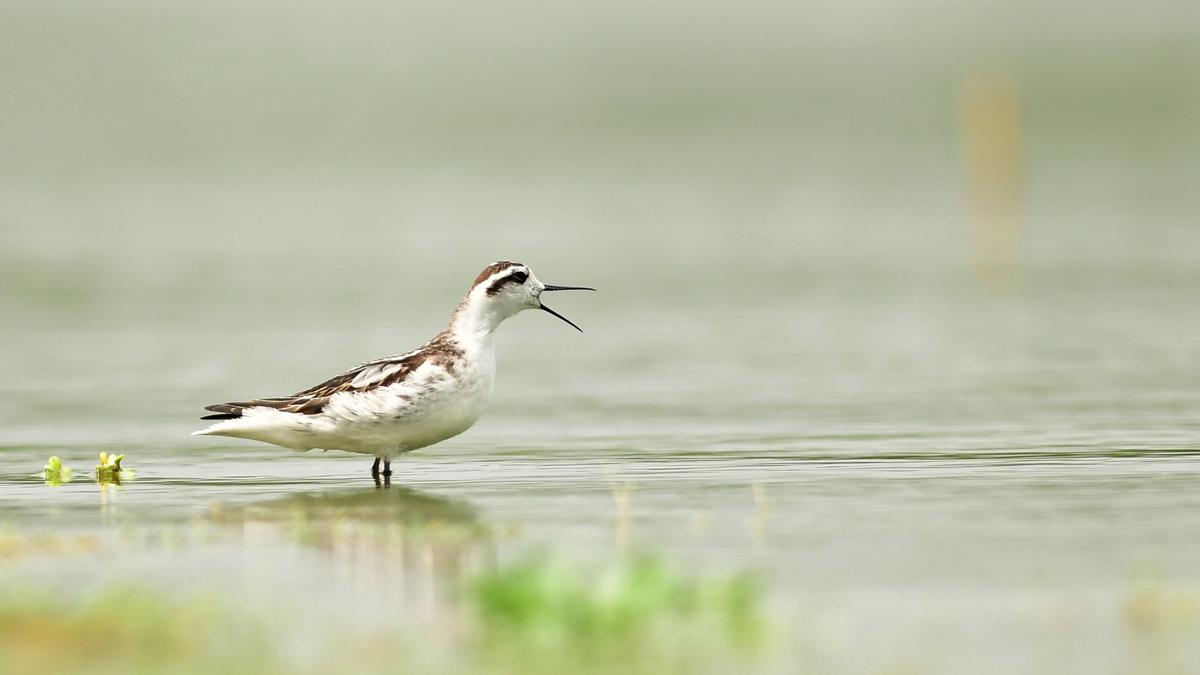
- 24 Sep 2025
In News:
In a notable development for ornithology and biodiversity conservation, the Red-necked Phalarope (Phalaropuslobatus), a rare migratory shorebird, has been sighted for the first time at the Nanjarayan Bird Sanctuary near Tiruppur, Tamil Nadu.
About the Red-Necked Phalarope
The Red-necked Phalarope is a small, migratory wader renowned for its unique feeding behavior and striking breeding plumage.
- Distinctive Feeding Behavior:It is known for its characteristic habit of spinning rapidly in circles on the water surface to stir up small invertebrates and plankton, which it then feeds upon.
- Physical Features:During the breeding season, the bird exhibits chestnut-red plumage extending from behind the ear to the sides of the neck — a feature that gives it its name.
Unusually among birds, the female is more brightly coloured than the male, and the species displays polyandrous behaviour (females mate with multiple males), with males incubating the eggs and caring for the chicks.
Distribution and Habitat
The Red-necked Phalarope has a circumpolar distribution, breeding in boreal and tundra zones between 60° and 70° latitude, across regions such as the Arctic coasts, Aleutian Islands, and northern Britain.
- During migration and the non-breeding season, it spends much of its time at sea, especially across:
- The Arabian Sea,
- Waters off central-west South America, and
- The central Indonesian to western Melanesian regions.
The recent sighting at Nanjarayan Bird Sanctuary — a vital inland wetland ecosystem — highlights the site’s growing importance as a stopover for migratory shorebirds along the Central Asian Flyway.
Conservation Status
- IUCN Red List:Least Concern
Despite being widespread globally, localized population declines have been observed due to habitat degradation, pollution, and climate-induced changes in migratory routes.
‘One-In, One-Out’ Migration Scheme
- 24 Sep 2025
In News:
- An Indian national has become the first person to be deported from the United Kingdom to France under the newly launched “one-in, one-out” migration scheme, part of the UK–France Returns Treaty.
- The deportation marks the beginning of a new bilateral arrangement aimed at curbing illegal cross-Channel migration and dismantling human smuggling networks operating between the two countries.
Background and Context
- The deported individual reportedly arrived in the UK illegally via the English Channel in early August 2025 aboard a small boat — one of the most common routes used by irregular migrants. He was subsequently detained and later flown from Heathrow to Paris on an Air France flight, under the provisions of the UK–France returns framework.
- The UK Home Office confirmed that upon arrival in France, the individual would be offered a voluntary, paid-for return to his home country. If he declines, he could face enforced deportation.
- The deportation comes amid a broader crackdown on illegal immigration in the UK, with reports indicating a sharp rise in Indian nationals detained in British immigration centres in recent months.
About the ‘One-In, One-Out’ Scheme
The “one-in, one-out” scheme is a bilateral deportation and migration management arrangement between the United Kingdom and France.
- Objective: To deter illegal small-boat crossings across the English Channel and disrupt human trafficking networks.
- Mechanism: For every illegal migrant returned by the UK to France, the UK will accept one legal asylum seeker from France — hence the name “one-in, one-out.”
- Implementation Period:August 2025 to June 2026, operating as a pilot programme subject to review.
- Provisions:
- Fast-track deportations for illegal entrants.
- Voluntary return option with financial assistance for deported migrants.
- Judicial oversight allowing courts to review last-minute appeals swiftly.
Significance of the Agreement
- Border Security: Strengthens the UK’s capacity to manage and deter illegal migration.
- International Cooperation: Demonstrates growing cross-border coordination between the UK and France on migration governance.
- Policy Shift: Reflects a move towards reciprocal responsibility in handling irregular migration.
- Political Impact: Reinforces the UK government’s tough stance on illegal immigration while maintaining humanitarian commitments.
Androth Anti-Submarine Warfare Ship
- 24 Sep 2025
In News:
- The Indian Navy has commissioned INS Androth, an indigenously built Anti-Submarine Warfare Shallow Water Craft (ASW-SWC), marking a significant milestone in strengthening India’s maritime security and self-reliance in defence production.
- Built by Garden Reach Shipbuilders & Engineers (GRSE), Kolkata, INS Androth is the second vessel in a series of eight ASW-SWCs being developed for the Navy.
Strategic Significance
- Named after Androth Island in the Lakshadweep archipelago, the ship’s designation underscores India’s commitment to safeguarding its maritime frontiers in the Arabian Sea and ensuring the security of critical sea lanes around the island territories.
- The induction comes at a time of growing Chinese naval presence in the Indian Ocean Region (IOR), adding a crucial layer of deterrence and surveillance to India’s coastal defence network.
Design and Capabilities
- INS Androth is designed for anti-submarine operations in shallow waters, coastal security patrols, and escort missions.
- It is 77 metres long and powered by diesel engine–waterjet propulsion, providing superior maneuverability in littoral and near-shore environments.
- Key onboard systems include:
- Advanced indigenous sonar and sensor suites for submarine detection and tracking.
- Lightweight torpedoes and ASW rockets for engaging underwater threats.
- 80% indigenous components, aligning with the ‘Aatmanirbhar Bharat’ initiative to reduce import dependence in defence production.
Operational Role
- The ship will primarily operate along India’s western seaboard, particularly around Lakshadweep, where it will conduct surveillance and deterrence missions against sub-surface threats.
- Its shallow-water design allows it to access areas that larger vessels cannot, enhancing the Navy’s reach in coastal and island territories.
India Re-elected to the Universal Postal Union’s Governing Bodies
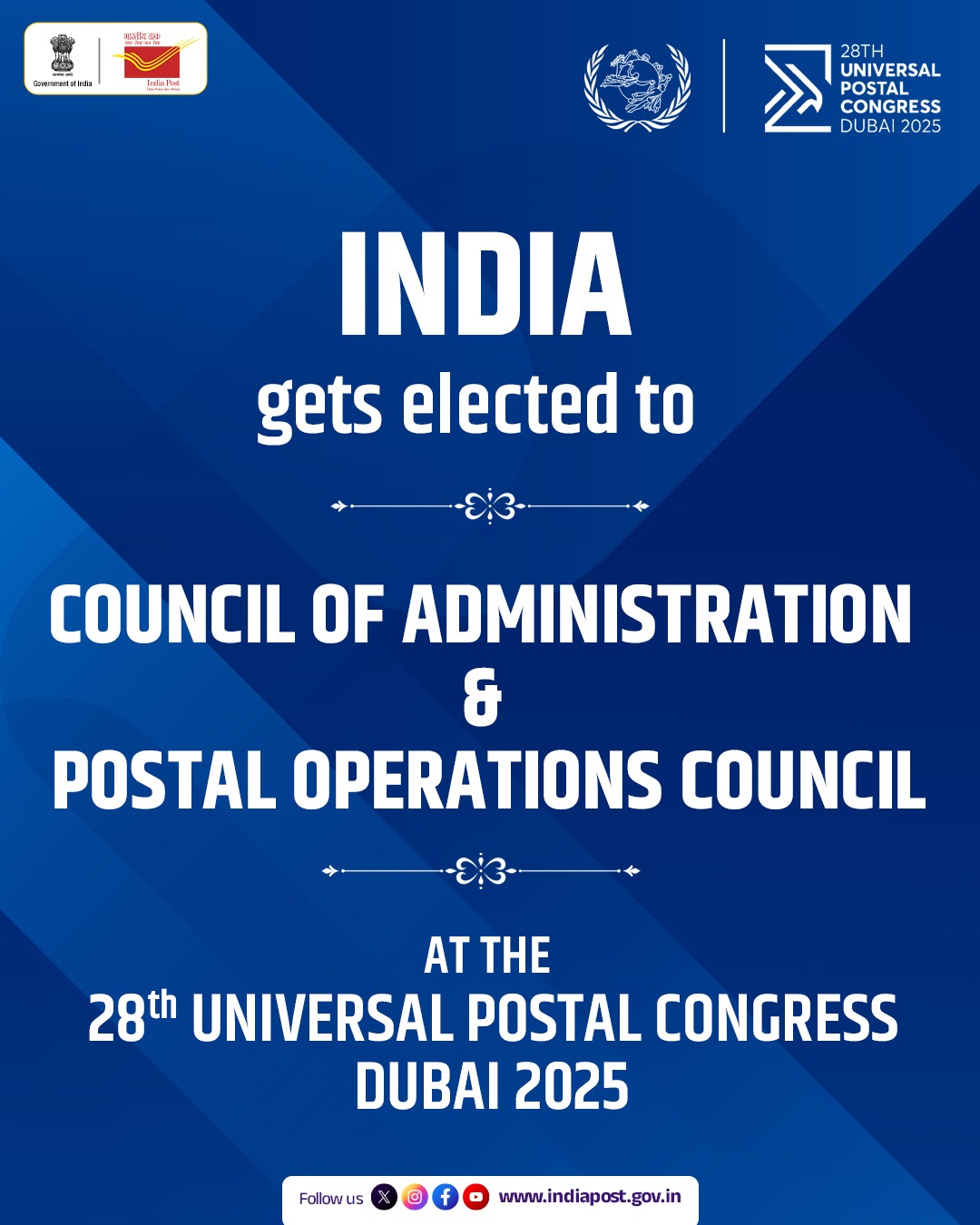
- 23 Sep 2025
In News:
- India has been re-elected to the Council of Administration (CA) and the Postal Operations Council (POC) of the Universal Postal Union (UPU) during the 28th Universal Postal Congress held in Dubai.
- This re-election reaffirms global confidence in India Post’s leadership, digital reforms, and commitment to inclusive postal development, strengthening India’s voice in shaping international postal governance.
About the Universal Postal Union (UPU)
- Founded: 1874 under the Treaty of Bern
- Headquarters: Berne, Switzerland
- Members: 192 countries
- Status: A specialized agency of the United Nations, it is the second-oldest international organization after the International Telecommunication Union (ITU).
Mandate and Objectives
- To promote global postal cooperation and ensure universal connectivity in mail and parcel delivery.
- To establish standards, regulations, and tariffs for international postal exchanges.
- To enhance efficiency, affordability, and reliability of postal services globally.
- To facilitate the growth of e-commerce and cross-border logistics through modern postal systems.
Governance Structure of UPU
The UPU functions through four key organs:
- Congress:
- The supreme decision-making body, convened every four years.
- Sets the long-term strategy, budget, and policy framework for global postal operations.
- Council of Administration (CA):
- Handles policy, legal, administrative, and regulatory issues between Congress sessions.
- Oversees the implementation of Congress decisions and coordinates global postal governance.
- Postal Operations Council (POC):
- The technical and operational body comprising 48 elected member countries.
- Works on service innovation, quality enhancement, digital integration, and modernisation of global postal systems.
- International Bureau:
- The secretariat of the UPU providing logistical, analytical, and technical support to member states and councils.
Significance of India’s Re-election
- Endorsement of Leadership: India’s re-election underscores the international community’s trust in its postal transformation, particularly in digital and financial inclusion.
- Modernisation Initiatives: India Post’s progress in e-commerce facilitation, postal banking, logistics efficiency, and technology-driven governance has positioned it as a model for developing nations.
- Strategic Representation: Through its roles in both CA and POC, India can influence policy formulation, standard setting, and capacity-building initiatives within the UPU.
- Global Collaboration: Reinforces India’s vision of “One World, One Postal Network”, aligning with its broader digital diplomacy and South-South cooperation goals.
India and the UPU: A Historical Perspective
- India joined the UPU in 1876, just two years after its establishment.
- Over the decades, it has played a constructive role in strengthening postal connectivity across the Global South.
- Under the leadership of the Ministry of Communications, India Post has transitioned from traditional mail delivery to offering digital, financial, and logistical services, supporting Digital India and Atmanirbhar Bharat missions.
Trump Imposes $100,000 Fee On H-1B Visas
- 23 Sep 2025
In News:
- In a significant policy shift, U.S. President Donald Trump signed a proclamation in October 2025 introducing a $100,000 (≈ ?88 lakh) sponsorship fee for H-1B visas, dramatically raising the cost for U.S. companies hiring foreign skilled workers.
- The move, presented as a measure to “protect American jobs,” marks one of the most stringent immigration-related economic policies in recent years and has wide-ranging implications for India’s IT sector, which remains the largest user of H-1B visas.
About the Policy
- New Regulation: U.S. employers sponsoring an H-1B worker must now pay a non-refundable fee of $100,000 per application, a steep increase from the earlier few-thousand-dollar processing cost.
- Official Objective: To ensure that only “highly skilled, non-substitutable” professionals are brought into the U.S., while deterring misuse of the program by firms replacing American workers with cheaper foreign labour.
- Rationale: According to the U.S. administration, the H-1B system is one of the most abused visa categories, often exploited by outsourcing companies to fill mid-level tech roles at lower wages.
Understanding the H-1B Visa
The H-1B is a non-immigrant U.S. work visa that allows companies to hire foreign professionals in specialty occupations requiring technical or theoretical expertise—mainly in STEM, finance, healthcare, and IT sectors.
- Introduced: Under the Immigration Act of 1990
- Eligibility: Bachelor’s degree or equivalent in a relevant field
- Tenure: Valid for 3 years, extendable up to 6 years (and beyond if Green Card process is ongoing)
- Quota: 65,000 general visas + 20,000 reserved for advanced U.S. degree holders
- Equal Pay Mandate: Employers must offer wages comparable to those of American workers to prevent labour exploitation
Applications are processed through the USCIS lottery system, which randomly selects qualified candidates.
Impact on India
1. Economic & Corporate Impact
- Cost Escalation: Indian IT majors like TCS, Infosys, and Wipro, which collectively sponsor thousands of H-1B employees annually, will face a steep rise in operational expenses.
- Reduced Hiring Abroad: Companies may shift high-skill operations back to India or relocate nearshore to countries such as Canada or Mexico to avoid the inflated cost.
- Automation Drive: Higher labour costs may accelerate automation and AI adoption within U.S. operations, reducing dependence on human capital from abroad.
2. Workforce & Migration Implications
- Major Beneficiaries Affected: Indians account for nearly 71% of all H-1B approvals, followed by China (≈12%).
- Extended Burden: Since most Indian professionals renew their H-1B multiple times due to the 10–15 year Green Card backlog, the cumulative cost will be enormous.
- Talent Diversion: The measure could divert Indian talent toward Canada, the EU, or Australia, which have relatively liberal skilled-migration policies.
‘Gold Card’ Visa Scheme
Alongside the H-1B fee hike, Trump announced a ‘Gold Card Visa Program’:
- Entry Fee: $1 million for individuals and $2 million for businesses.
- Objective: To attract “extraordinary individuals” capable of creating jobs and investments in the U.S. economy.
- Economic Rationale: The administration projects billions in revenue from the program to help reduce public debt and taxes.
- Selective Entry Policy: The move signals a shift from a skill-based to a wealth-based migration system, prioritizing elite entrepreneurs and investors over mid-level professionals.
Broader Policy Context
- The Trump administration has revived tougher citizenship tests, reinstating a 128-question civics and history exam (scrapped by the Biden government earlier), reflecting a wider push for restrictive immigration vetting.
- This marks a continuation of “America First” politics, emphasizing domestic employment protection and economic nationalism.
Implications for India–U.S. Relations
- Technology and Trade Impact: India’s $150+ billion IT export industry—largely dependent on U.S. markets—could face reduced competitiveness and project delays.
- Diplomatic Challenge: New Delhi must engage with Washington to safeguard the interests of Indian professionals and ensure that the visa restrictions do not spill over into bilateral technology and trade cooperation.
- Shift in Talent Dynamics: The policy could push India to strengthen domestic R&D ecosystems and negotiate reciprocal work mobility frameworks under trade agreements.
Global and Strategic Outlook
- Protectionism Resurgence: The policy aligns with a global trend of tightening skilled-migration channels amid economic uncertainty.
- Business Adaptation: U.S. tech firms like Amazon, Microsoft, Meta, and Google, which collectively secured over 25,000 H-1B approvals in early 2025, may now restructure hiring models or expand offshore R&D hubs in India.
- Brain Drain Reversal: Rising visa barriers could retain skilled manpower in India, strengthening domestic innovation capacity under initiatives like “Skill India 4.0” and “Startup India.”
India’s Manufacturing Momentum
- 23 Sep 2025
In News:
- India’s manufacturing sector has entered a phase of accelerated growth, driven by policy reforms, robust industrial performance, and rising global investor confidence.
- Recent data for July 2025 shows the Index of Industrial Production (IIP) growing 3.5% year-on-year, led by a 5.4% surge in manufacturing output.
- Simultaneously, the HSBC Manufacturing PMI reached 59.3, its highest in 16 months, signalling sustained expansion in factory activity and optimism among producers.
Current Performance Snapshot
|
Indicator |
Latest Data (2025) |
Trend/Significance |
|
IIP Growth |
3.5% (July 2025) |
Recovery in industrial output |
|
Manufacturing Growth |
5.4% |
Rising demand and capacity utilization |
|
Merchandise Exports (Apr–Aug) |
US$ 184.13 billion (+2.52% YoY) |
Strong export resilience |
|
Unemployment Rate |
5.1% (Male UR: 5.0%) |
5-month low; inclusive job growth |
|
FDI Inflows (FY25) |
US$ 81.04 billion (+14% YoY) |
Investor confidence improving |
|
Manufacturing FDI |
US$ 19.04 billion (+18%) |
Strengthening industrial base |
Engines of Growth
1. Electronics: Digital Factory Revolution
India’s electronics sector has witnessed exponential growth:
- Production rose from ?1.9 lakh crore (2014–15) to ?11.3 lakh crore (2024–25) — a 6x jump.
- Mobile phone manufacturing expanded from 2 units to over 300, while exports skyrocketed 127 times (?1,500 crore → ?2 lakh crore).
- Import dependence fell from 75% to 0.02%, reflecting strong domestic capacity.
- FDI inflow of US$ 4 billion since FY2020–21, largely under the PLI Scheme, has made India the world’s second-largest mobile manufacturer.
2. Pharmaceuticals: The Global Health Anchor
India ranks 3rd globally by volume and 14th by value in pharma production, supplying 50% of the world’s vaccines and 40% of U.S. generics.
- Projected to reach US$ 130 billion by 2030 and US$ 450 billion by 2047.
- Backed by PLI (?15,000 crore) and SPI (?500 crore) schemes for high-value drug manufacturing, quality enhancement, and R&D modernisation — consolidating India’s status as the “Pharmacy of the World.”
3. Automobiles: Driving Industrial Scale
The automotive sector contributes 7.1% to GDP and 49% of manufacturing GDP.
- In FY25, production exceeded 3.10 crore units, making India the 4th-largest automobile producer globally.
- GST 2.0’s tax reduction on vehicles and components is expected to boost consumer demand and accelerate production.
4. Textiles: Weaving Inclusive Growth
The textile and apparel industry contributes2.3% to GDP, 13% to industrial production, and 12% to exports, employing 45 million people.
- With a growth target of US$ 350 billion by 2030, the sector benefits from PM MITRA Parks (?4,445 crore), aimed at attracting ?70,000 crore investment and creating 20 lakh jobs.
- The recently inaugurated Dhar PM MITRA Park (Madhya Pradesh) is projected to generate 3 lakh jobs across 1,300 acres.
Investment, Employment, and Skills
- FDI Surge: Total inflows (2014–25) reached US$ 748.78 billion, up 143% from the previous decade.
- Top FDI sources: Singapore (30%), Mauritius (17%), U.S. (11%).
- Employment Creation: 17 crore jobs added over the last decade.
- Worker Population Ratio (WPR): 52.2% overall; Female WPR: 32%.
- Manufacturing’s job share: Up from 6% (2004–14) to 15% (2014–24).
- Skill Development Push: The Skill India 4.0 framework (?8,800 crore outlay) integrates major schemes (PMKVY 4.0, Apprenticeship, Jan ShikshanSansthan) to create an industry-aligned workforce equipped for Industry 4.0 technologies.
Policy Catalysts Powering the Surge
1. GST 2.0: Rationalisation for Growth
Launched in September 2025 under the banner “GST Bachat Utsav”, the reform simplifies tax slabs and lowers rates on 375+ items.
Impact on Manufacturing:
- Reduced Input Costs: 5% GST on packaging, textiles, and logistics lowers production expenses.
- MSME Boost: Faster refunds and simplified compliance enhance liquidity.
- Auto Sector Support: Lower taxes on small vehicles and parts drive consumption.
- Logistics Efficiency: Reduced GST on trucks and delivery vans enhances competitiveness.
2. National Manufacturing Mission (NMM)
The NMM provides a strategic, cross-ministerial roadmap integrating sustainability with industrial expansion. It promotes green manufacturing in solar PV, EV batteries, and hydrogen — aligning with India’s Net Zero 2070 goal.
3. Production Linked Incentive (PLI) Scheme
Covering 14 sectors with an outlay of ?1.97 lakh crore, the PLI scheme has:
- Boosted exports (e.g., smartphones > ?1 lakh crore in FY26 first half).
- Shifted pharma from trade deficit to surplus.
- Generated large-scale investments and jobs in electronics, autos, and medical devices.
4. National Logistics Policy (NLP)
Aims to reduce logistics cost (~13–14% of GDP) to single digits, improving LPI ranking to top 25 by 2030.
The PM GatiShakti Plan and Comprehensive Logistics Action Plan (CLAP) strengthen multi-modal connectivity and digital coordination.
5. Startup India & Industrial Corridors
- Over 1.91 lakh startups and 17.69 lakh direct jobs (as of 2025).
- 12 new industrial corridor projects worth ?28,602 crore approved to create smart, sustainable manufacturing cities.
Challenges Ahead
- Infrastructure Costs: Logistics remains costlier than global average, affecting export competitiveness.
- Skill Mismatch: Need for advanced training in automation, robotics, and AI.
- Regulatory Friction: Land and compliance issues constrain MSMEs.
- Global Headwinds: Trade protectionism and geopolitical volatility may disrupt export growth.
- Sustainability Imperative: Transition to low-carbon manufacturing critical to meet Net Zero goals.
Way Forward
- Plug-and-Play Manufacturing Parks: Accelerate park development with ready utilities for MSMEs.
- Skill India 4.0: Modernize ITIs, establish Centres of Excellence in robotics, AI, and green manufacturing.
- Tariff Rationalization: Lower duties on industrial raw materials to strengthen global competitiveness.
- Strengthen MSME Ecosystem: Provide concessional finance, technology upgradation, and global market access.
- Global Integration: Conclude FTAs (UK, EU) and join supply-chain alliances to diversify markets.
- Energy Diplomacy: Secure long-term access to crude oil, gas, and critical minerals.
Saudi–Pakistan Strategic Mutual Defence Agreement (SMDA)
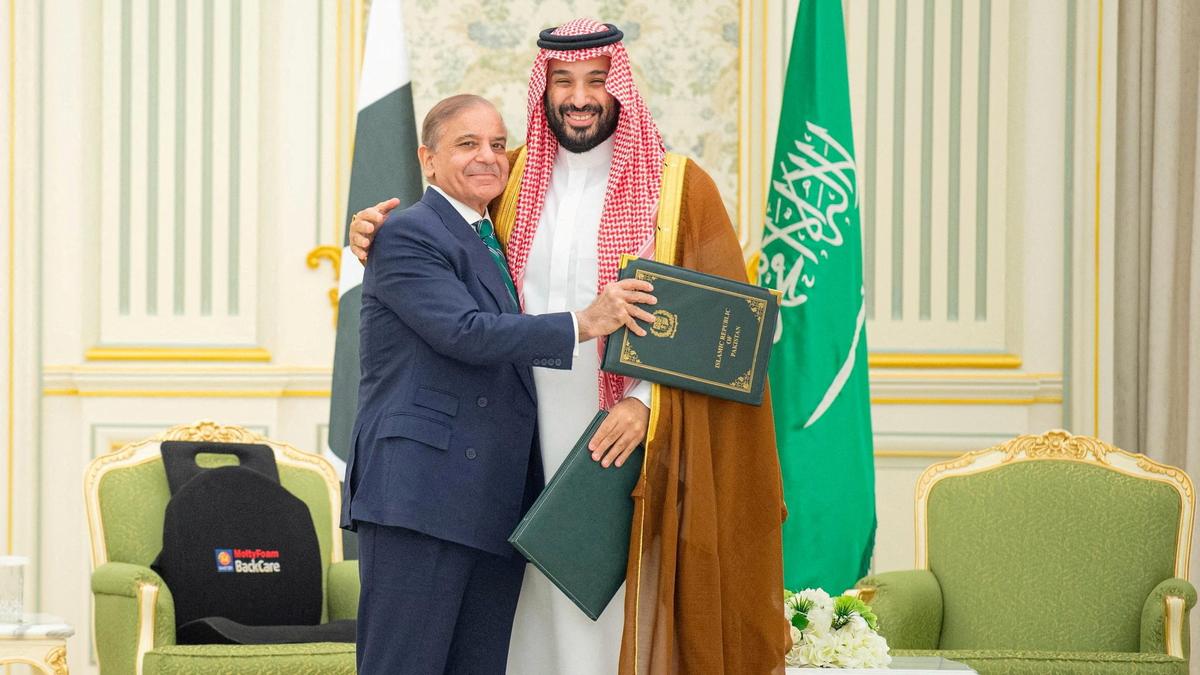
- 23 Sep 2025
In News:
- Recently, Saudi Arabia and Pakistan signed a Strategic Mutual Defence Agreement (SMDA) in Riyadh, formalising a long-discussed framework for joint defence and mutual security.
- The agreement, viewed as a landmark in bilateral ties, symbolises a renewed effort to institutionalise their security partnership amid changing regional dynamics and waning U.S. influence in West Asia.
Nature and Scope of the Pact
- The SMDA commits both nations to collective defence, stipulating that any attack on one country will be treated as an attack on both.
- It builds upon the 1982 Bilateral Security Cooperation Agreement, strengthening channels of military coordination, intelligence exchange, training, and arms trade.
- The pact extends across conventional defence cooperation, advisory roles, and — in principle — joint deterrence, though not explicitly nuclear.
Strategic Context
- The timing of the agreement follows rising regional uncertainty, including Israel–Qatar tensions, Yemen conflict spillovers, and Iran–Saudi rivalry.
- By signing the SMDA, Riyadh signals its intent to pursue greater regional self-reliance in defence, moving beyond full dependence on the U.S. security umbrella.
- For Pakistan, it secures much-needed economic and energy support from Saudi Arabia amid a deep fiscal crisis, while reaffirming its role as a key security partner in the Islamic world.
Key Drivers
- Mutual Security Assurance: Establishes a framework for joint deterrence and defence coordination.
- Economic Complementarity: Opens avenues for Saudi financial assistance, arms procurement, and energy trade with Pakistan.
- Symbolic Islamic Solidarity: Positions Pakistan as a pan-Islamic security contributor, enhancing its strategic visibility.
- Regional Rebalancing: Demonstrates Saudi Arabia’s effort to diversify security partnerships beyond Washington and regional blocs.
Implications
1. For India
- Strategic Caution: While the pact theoretically enables Pakistan to seek Saudi backing in a potential India–Pakistan confrontation, Riyadh’s growing ties with India — including $42.9 billion in bilateral trade, defence collaboration, and major investments — make an overt anti-India stance unlikely.
- Diplomatic Opportunity: New Delhi can leverage its energy and economic partnerships to maintain Saudi neutrality in South Asian affairs.
- Policy Imperative: India must sustain strategic dialogue and ensure Arab neutrality in regional crises through proactive diplomacy.
2. Regional and Global Dimension
- Shift in Gulf Security Architecture: Reflects a decline in U.S. dominance and emergence of a multipolar Gulf order, with Riyadh exploring independent alliances.
- Iran–Saudi–Pakistan Equation: Enhances Saudi deterrence posture against Iran, Yemeni Houthis, and potentially Israel’s unilateral actions.
- Nuclear Sensitivities: Raises concerns about possible nuclear collaboration, though the actual transfer of Pakistani nuclear technology to Saudi Arabia remains highly improbable, constrained by global non-proliferation norms and Israeli sensitivities.
Way Forward for India
- Deepen Defence and Security Cooperation: Expand joint training, exercises, and intelligence exchanges with Saudi Arabia.
- Energy Diplomacy: Pursue long-term crude oil and green hydrogen partnerships to consolidate interdependence.
- Strategic Monitoring: Closely track SMDA implementation, including possible Pakistani troop deployments or defence projects.
- Maritime Synergy: Strengthen India’s presence in the Arabian Sea through naval cooperation to protect vital energy routes.
- Economic Leverage: Utilize India’s market potential and diaspora network as stabilising anchors in Indo-Saudi relations.
GST 2.0
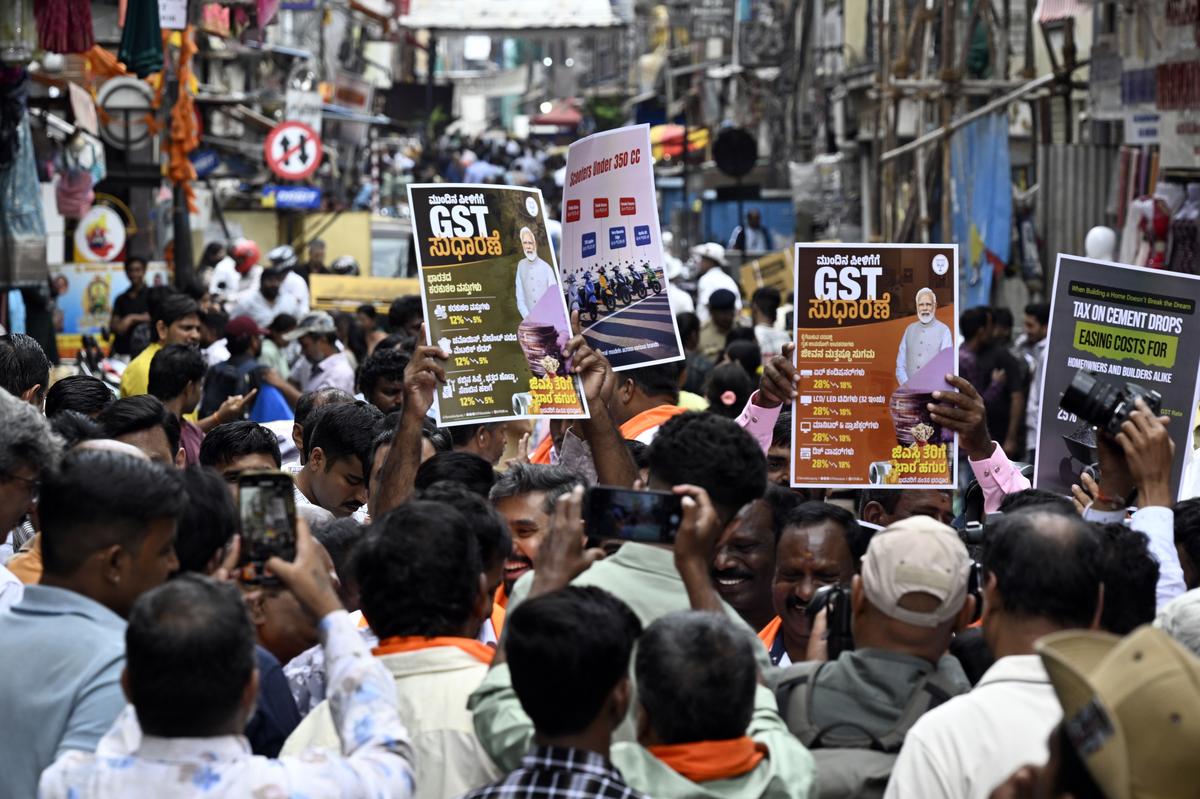
- 23 Sep 2025
In News:
The Government of India launched GST 2.0, marking a significant revamp of the Goods and Services Tax framework. Prime Minister Narendra Modi described the initiative as the “GST Bachat Utsav”, highlighting its focus on savings, simplicity, and growth.
Overview
- GST 2.0 represents the most comprehensive reform since the introduction of the Goods and Services Tax in 2017.
- It focuses on rationalising tax rates, reducing compliance burden, and boosting consumption and investment by lowering tax rates on more than 375 items.
Objectives
- Enhance household savings: By cutting rates on essential goods and services, it seeks to leave more disposable income with consumers, thereby stimulating demand.
- Simplify the tax framework: Aligns similar goods under the same slab to minimise disputes and litigation.
- Promote ease of doing business: Reduces procedural complexities and enhances transparency through digital solutions.
Key Features
- Simplified Tax Structure:Moves towards a broad two-slab system—5% (merit rate) and 18% (standard rate)—with a 40% slab for demerit or luxury goods.
- Consumer-Centric Relief:Tax reductions on essential food items, life and health insurance, and beauty and wellness services.
- Technology-Driven Compliance:Introduces digital registration, pre-filled returns, and automated refund systems, including 90% provisional refunds for Integrated Dispute Settlement (IDS) cases.
- Input-Output Correction:Aligns related goods under the same tax bracket to avoid input-output tax mismatches.
- Support for Key Sectors:Rate cuts to encourage investment and growth in textiles, agriculture, construction, and services industries.
Revised Tax Slabs
|
Rate |
Category / Examples |
|
0.25% |
Rough diamonds, precious stones |
|
1.5% |
Cut and polished diamonds |
|
3% |
Precious metals (gold, silver, pearls) |
|
5% |
516 items including food, agricultural machinery, medical devices, hydrogen vehicles, health & life insurance, salons |
|
18% |
640 items including machinery, chemicals, paints, automobile parts, small cars/bikes |
|
40% (Demerit Rate) |
Pan masala, tobacco, aerated beverages, luxury yachts, private aircraft, high-end vehicles |
|
Special Provision |
Bricks remain under dual option — 6% (without ITC) or 12% (with ITC) |
Significance: GST 2.0 is expected to spur demand, enhance compliance, and boost industrial growth, positioning India’s indirect tax system among the most simplified globally.
Iridogorgia Chewbacca
- 22 Sep 2025
In News:
Marine scientists have identified a new species of deep-sea coral, named Iridogorgiachewbacca, after the iconic Star Wars character Chewbacca. The name was inspired by the coral’s long, curly, and “hairy” branches resembling the furry appearance of the Wookiee warrior from the franchise.
Discovery and Habitat
- The coral was first observed in 2006 off the coast of Moloka?i (Hawaii) and later near the Mariana Trench in 2016, within the tropical western Pacific Ocean.
- It has now been officially described and classified as a new species in the genus Iridogorgia, following extensive research and genetic testing conducted by an international team of scientists, including Professor Les Watling from the University of Hawai?i at M?noa.
- The discovery was formally published in the scientific journal Zootaxa, highlighting its contribution to deep-sea biodiversity research.
About Iridogorgiachewbacca
- Taxonomy: Belongs to the genus Iridogorgia under the class Anthozoa, a group of deep-sea soft corals.
- Physical Features:Characterised by long, flexible, spiral-like branches with a shiny surface that reflects light in unique ways. These hair-like branches give it a distinct “furry” appearance.
- Growth Pattern: The coral grows upright and solitary on deep-sea rocky substrates, often hundreds to thousands of metres below sea level.
- Colony Structure: Each coral colony is made up of thousands of small polyps working together as a single organism.
Scientific Significance
The identification of Iridogorgiachewbacca underscores the vast biodiversity of the deep ocean, much of which remains unexplored. Even in relatively well-studied regions such as the western Pacific, new species continue to be discovered, highlighting the importance of deep-sea research and conservation.
Understanding Corals
- Biological Nature: Corals are marine animals, not plants, and remain sessile (attached to the seabed).
- Symbiotic Relationship: They coexist with microscopic algae called zooxanthellae, which provide nutrients through photosynthesis.
- Feeding: Corals also use their tiny, tentacle-like structures to capture food particles from the surrounding water.
- Ecological Role: Coral ecosystems support immense marine biodiversity, acting as habitats, breeding grounds, and protection zones for numerous marine species.
Why It Matters
- Expands scientific understanding of deep-sea ecosystems and their unique biodiversity.
- Reinforces the need for marine conservation amid increasing threats from deep-sea mining, climate change, and ocean acidification.
- Demonstrates how popular culture references can enhance public engagement with scientific discoveries, making marine science more accessible.
Pradhan Mantri Mudra Yojana (PMMY)
- 22 Sep 2025
In News:
Launched in 2015, the Pradhan Mantri Mudra Yojana (PMMY) is a flagship financial inclusion initiative of the Government of India. The scheme seeks to provide affordable credit to micro and small enterprises (MSEs) engaged in non-farm income-generating activities, thereby integrating them into the formal financial ecosystem.
Objective
- PMMY aims to “fund the unfunded” by facilitating access to institutional credit for small entrepreneurs who traditionally lack collateral or formal financial history.
- The scheme empowers these enterprises through loans provided by Public Sector Banks (PSBs), Regional Rural Banks (RRBs), Cooperative Banks, Private Banks, Foreign Banks, Micro Finance Institutions (MFIs), and Non-Banking Financial Companies (NBFCs).
Key Features and Loan Details
- Loan Amount: Up to ?10 lakh for non-farm income-generating activities across sectors such as manufacturing, processing, trading, and services.
- Eligibility: Any Indian citizen with a viable business plan for such activities can apply for a MUDRA loan through approved institutions.
- Subsidy: PMMY does not directly offer subsidies; however, if linked to other government schemes with capital subsidies, those benefits can be availed concurrently.
Categories of MUDRA Loans
|
Category |
Loan Range |
Target Group |
|
Shishu |
Up to ?50,000 |
New or micro enterprises in the early stage |
|
Kishore |
?50,000 – ?5 lakh |
Businesses seeking growth or consolidation |
|
Tarun |
?5 lakh – ?10 lakh |
Enterprises looking to expand operations |
Achievements under MUDRA 1.0
- Credit Outreach: Over ?27.75 lakh crore has been disbursed to nearly 47 crore beneficiaries, expanding access to formal credit for small entrepreneurs.
- Social Inclusion: Around 69% of loan accounts are held by women, while 51% belong to SC, ST, and OBC categories — strengthening financial inclusion and social equity.
- Employment Generation: The scheme has spurred job creation and self-employment, particularly in rural and semi-urban areas, fostering local entrepreneurship and economic decentralisation.
Vision for MUDRA 2.0
To further enhance the scheme’s reach and impact, the proposed MUDRA 2.0 envisions the following reforms:
- Wider Outreach: Greater focus on underserved rural and semi-urban regions through digital platforms and community-level facilitation.
- Financial Literacy & Mentorship: National-level programmes to improve awareness about budgeting, savings, digital transactions, and credit management to ensure sustainable enterprise growth.
- Enhanced Credit Guarantee Scheme (ECGS): A robust guarantee mechanism to minimise lender risk and encourage more credit flow to micro enterprises.
- Real-Time Monitoring Framework: Technology-driven systems for tracking disbursal, utilisation, and repayment to ensure transparency and reduce misuse.
- Impact Evaluation: Periodic socio-economic assessments to measure outcomes on income generation, employment, and business viability.
Adamya Fast Patrol Vessel
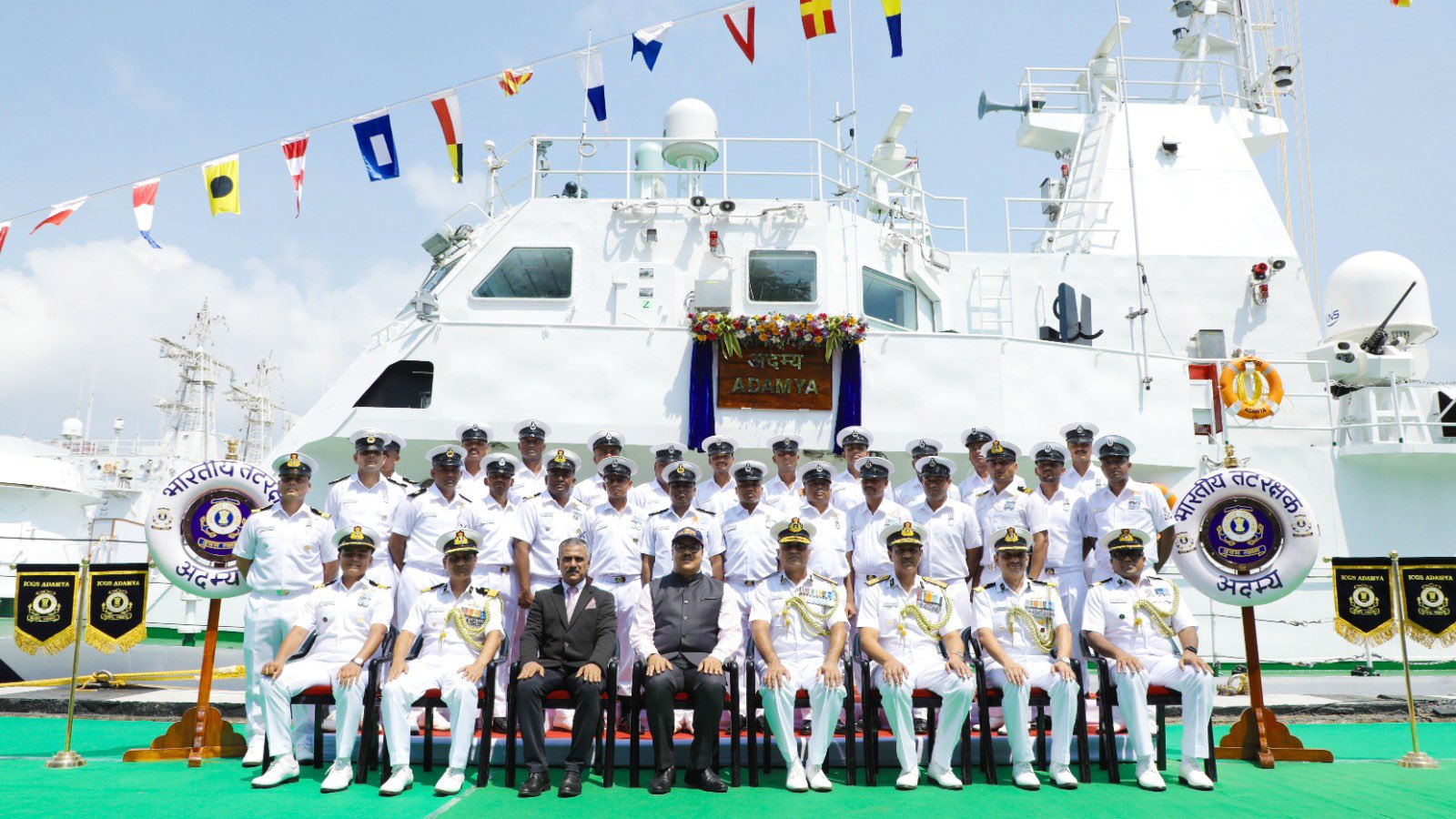
- 22 Sep 2025
In News:
The Indian Coast Guard Ship (ICGS) Adamya, the first in a new series of eight Adamya-class Fast Patrol Vessels (FPVs), was commissioned at Paradip Port, Odisha. The vessel, designed and built indigenously by Goa Shipyard Limited (GSL), marks another step forward in India’s Aatmanirbhar Bharat initiative in the defence sector.
About ICGS Adamya
- Meaning: “Adamya” translates to indomitable, symbolizing the Indian Coast Guard’s (ICG) resolve to safeguard the nation’s maritime interests.
- Operational Base: The ship will be based at Paradip, Odisha, under the administrative control of the Commander, ICG Region (North East).
- Crew Strength: The vessel is manned by five officers and 34 personnel.
- Primary Role: Coastal surveillance, anti-smuggling operations, anti-poaching patrols, and search and rescue missions within India’s maritime zones.
Key Specifications
|
Feature |
Specification |
|
Displacement |
Approx. 320 tons |
|
Speed |
Maximum 28 knots |
|
Endurance |
1500 nautical miles at economical speed |
|
Propulsion |
Two 3000 KW diesel engines |
|
Builder |
Goa Shipyard Limited |
|
Indigenous Content |
Over 60% |
Technological Highlights
- First-of-its-kind Propulsion:The Adamya is the first Indian vessel fitted with indigenously developed Controllable Pitch Propellers (CPPs) and gearboxes, enhancing manoeuvrability and fuel efficiency.
- Advanced Systems:Equipped with an Integrated Bridge System (IBS), Integrated Platform Management System (IPMS), and Automated Power Management System (APMS) to improve operational efficiency and automation.
- Weaponry:Armed with a 30 mm CRN 91 gun and two 12.7 mm stabilized remote-controlled machine guns, supported by advanced fire-control systems.
About Fast Patrol Vessels (FPVs)
Fast Patrol Vessels are medium-sized, high-speed ships used by the Indian Coast Guard for surveillance, policing, and search and rescue operations in coastal areas. They play a vital role in maintaining maritime safety, enforcing laws, and preventing smuggling and infiltration.
SwasthNari, SashaktParivarAbhiyaan
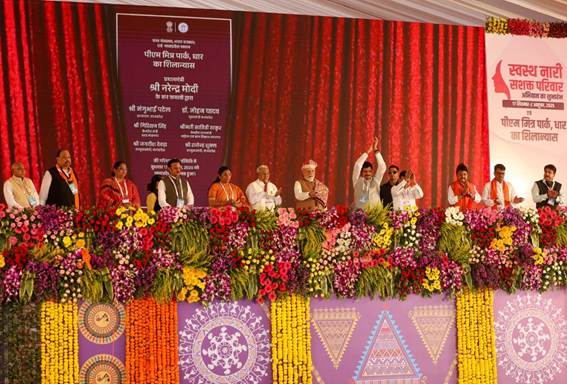
- 22 Sep 2025
In News:
Recently, Prime Minister Narendra Modi launched the ‘SwasthNari, SashaktParivar (SNSP) Abhiyaan’ and the 8thRashtriyaPoshanMaah from Dhar, Madhya Pradesh, marking one of India’s largest-ever health outreach campaigns for women and children. The initiative reflects the government’s commitment to promoting women-led development and holistic family well-being through accessible and equitable healthcare.
About the SwasthNari, SashaktParivarAbhiyaan
- The SNSP Abhiyaan is a joint initiative of the Ministry of Health & Family Welfare (MoHFW) and the Ministry of Women & Child Development (MoWCD).
- It aims to provide preventive, promotive, and curative health services to women and children, particularly in underserved regions.
- The campaign will organize over 10 lakh health camps between 17th September and 2nd October 2025 at Ayushman Arogya Mandirs, Community Health Centres (CHCs), District Hospitals, and other public health facilities across the country.
- This mass mobilisation aligns with the broader vision of Viksit Bharat (Developed India), where “Nari Shakti” (women power) forms the foundation of national progress.
Key Objectives
- Enhance Women’s Health through Screening and Care:Regular health check-ups for women, focusing on non-communicable diseases (NCDs) such as hypertension, diabetes, cancer, anaemia, tuberculosis, and sickle cell disease.
- Promote Maternal and Child Well-being:Strengthening antenatal care, immunisation, nutrition counselling, menstrual hygiene awareness, and adolescent health initiatives.
- Foster Behavioural Change and Health Education:Conducting awareness drives on healthy lifestyle practices, mental health, obesity prevention, and voluntary blood donation.
- Encourage Community Participation:Mobilisation through ASHAs, ANMs, Anganwadi workers, Self-Help Groups (SHGs), Panchayati Raj Institutions (PRIs), MY Bharat volunteers, and youth networks.
- Integrate Digital and Media Outreach:Real-time monitoring through the SASHAKT Portal, along with mass awareness via Doordarshan, All India Radio (AIR), and social media platforms.
Implementation Framework
- Nationwide Health Camps:Health facilities at all levels — from Ayushman Arogya Mandirs to tertiary hospitals — will provide free diagnostic tests, medicines, and specialist consultations.
- Specialist Services:Departments such as Gynaecology, Paediatrics, Ophthalmology, ENT, Dental, Dermatology, and Psychiatry will extend services through AIIMS, ESIC hospitals, Railway and Defence hospitals, and Institutes of National Importance (INIs).
- Public–Private Collaboration:Private hospitals and medical institutions have been encouraged to contribute to the outreach, ensuring broader reach and continuity of care.
- Community Health Monitoring:Volunteer initiatives like Nikshay Mitra will support tuberculosis prevention, while local youth networks promote healthy practices at the grassroots level.
Focus on Sickle Cell Anaemia
- During the launch, the Prime Minister handed over the 1 croreth Sickle Cell Card, underscoring the government’s National Sickle Cell Anaemia Mission. Over 5 crore individuals have been screened so far, especially in tribal-dominated regions, where the disease burden is highest. The mission aims at eliminating Sickle Cell Anaemia by 2047, ensuring improved tribal health outcomes.
Institutional and Grassroots Coordination
- Chief Ministers, Governors, Union Ministers, and local representatives across states participated in the launch events simultaneously. Ground-level implementation is being led by health workers, SHGs, PRIs, and community volunteers, ensuring last-mile outreach and inclusive participation.
Significance
- Largest Health Outreach in India: Over 10 lakh health camps make it the widest public health drive for women and children.
- Women-Centric Development: Strengthens India’s shift toward women-led welfare models under the vision of Viksit Bharat.
- Integrated Governance Model: Combines health, nutrition, and social empowerment across multiple ministries.
- Public Health Transformation: Promotes preventive healthcare, early detection, and equitable access to medical services.
- Focus on Tribal and Rural Health: Addresses critical health challenges in vulnerable and remote regions.
Kurmi Community
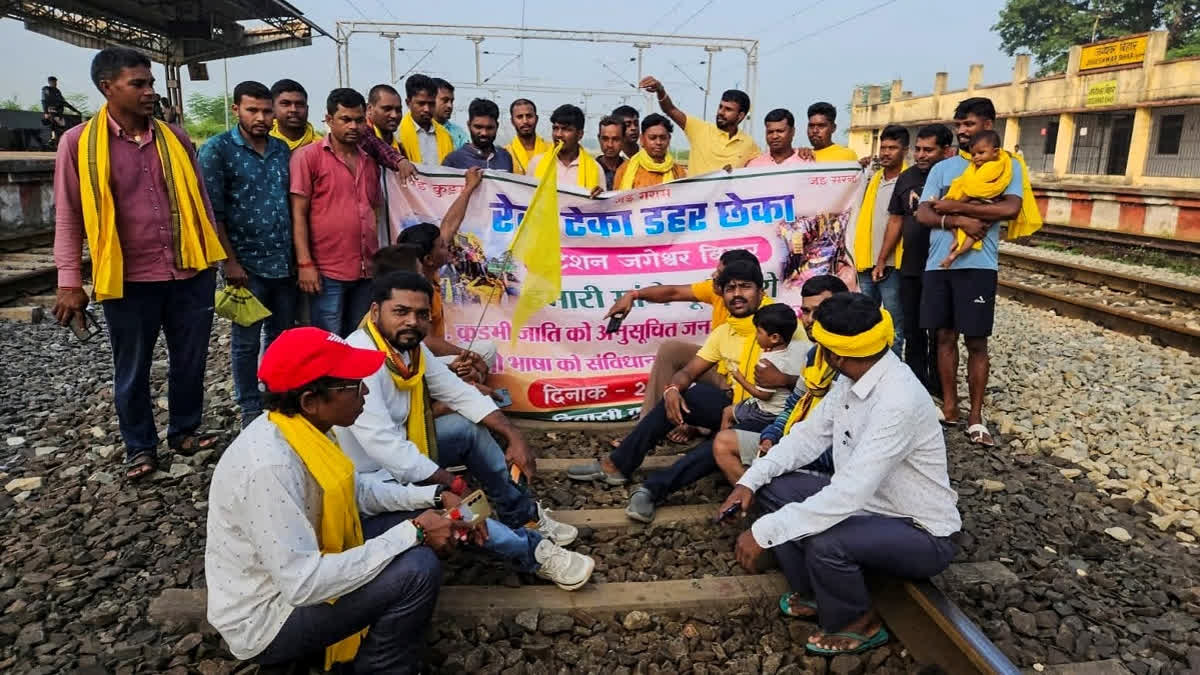
- 22 Sep 2025
In News:
Defying prohibitory orders, members of the Kurmi community in Jharkhand launched a rail blockade across several stations to demand Scheduled Tribe (ST) status and the inclusion of the Kurmali language in the Eighth Schedule of the Constitution. The agitation, organized under the banner of the Adivasi KurmiSamaj (AKS), disrupted train services across the South Eastern and East Central Railway divisions.
About the Kurmi Community
- Origins and Identity:The Kurmis (also known as Kunbi in some regions) are traditionally an agricultural community, predominantly Hindu, found across eastern Uttar Pradesh, southern Awadh, Bihar, Jharkhand, and parts of Odisha.The name “Kurmi” is derived from the Sanskrit word “Krishi” (agriculture), symbolizing their deep connection with farming.
- Historical Background:Historically, Kurmis are believed to be descendants of Kshatriya warriors who took to agriculture. Renowned for their hard work, soil management, and egalitarian culture, the community was lauded by both Mughal and British administrators for its agrarian contributions.
- Social Status:Currently, Kurmis are classified as Other Backward Class (OBC) in most Indian states. However, the community contends that their socio-cultural roots align more closely with tribal heritage, warranting ST recognition.
- Sub-Groups and Culture:The community is divided into several gotras (clans), including Chandel, Chauhan, Solanki, Tomar, Baghel, and Sengar. They are known for maintaining strong community networks and gender-inclusive social practices.
About the Kurmali Language
- Linguistic Affiliation:Kurmali belongs to the Indo-Aryan language family and is primarily spoken in Jharkhand, Bihar, and Odisha.
- Cultural Significance:It serves as a marker of Kurmi identity and is used in folk traditions, oral histories, and local communication.
- Demand for Recognition:Inclusion in the Eighth Schedule would ensure state-supported promotion, education, and preservation of the language, similar to other recognized regional languages.
Government Response and Implications
The Jharkhand administration has maintained a cautious approach, emphasizing the need for maintaining law and order while acknowledging the sensitivity of the community’s demands.The demand for ST status involves constitutional and demographic considerations, requiring evaluation by the Ministry of Tribal Affairs and approval by Parliament under Article 342 of the Constitution.
Gulf of Finland
- 21 Sep 2025
In News:
Estonia recently accused Russia of violating its airspace when three Russian MiG-31 fighter jets entered Estonian airspace over the Gulf of Finland, remaining there for approximately 12 minutes. The incident has heightened tensions between NATO and Russia, as Estonia is a NATO member and takes airspace security seriously in the strategically sensitive region.
About the Gulf of Finland
- Geography: The Gulf of Finland is the easternmost extension of the Baltic Sea, covering an area of 30,000 sq.km. It stretches 400 km from east to west and 19–130 km from north to south.
- Borders:
- North: Finland (including the capital, Helsinki)
- South: Estonia (including the capital, Tallinn)
- East: Russia (including St. Petersburg at the eastern tip)
- Physical Features:
- Average depth: 38 m
- Brackish water with low salinity (~6 ppt)
- Freezes over 3–5 months in winter
- Receives inflows from the Neva and Narva rivers and the Saimaa Canal
- Contains numerous banks, skerries, and islands, including Kotlin Island (Kronstadt), Beryozovye Islands, Lisiy Island, MalyVysotsky Island, among others.
- Climate: Humid continental, characterized by hot summers and relatively harsh winters.
Strategic Significance
The Gulf of Finland is strategically vital due to its location at the eastern edge of the Baltic Sea, proximity to major cities such as Helsinki, Tallinn, and St. Petersburg, and its role as a maritime and military corridor. The airspace and naval routes over the gulf are closely monitored by NATO and Russia, making any unauthorized incursion a serious geopolitical concern.
Implications
- For Estonia: The violation underscores the need for heightened air defense readiness along its borders.
- For NATO: The incident exemplifies the ongoing airspace tensions with Russia, reflecting broader geopolitical frictions in Northern Europe.
- For Russia: Demonstrates strategic airpower projection and interest in asserting influence over the Baltic region.
Yellow-Crested Cockatoos
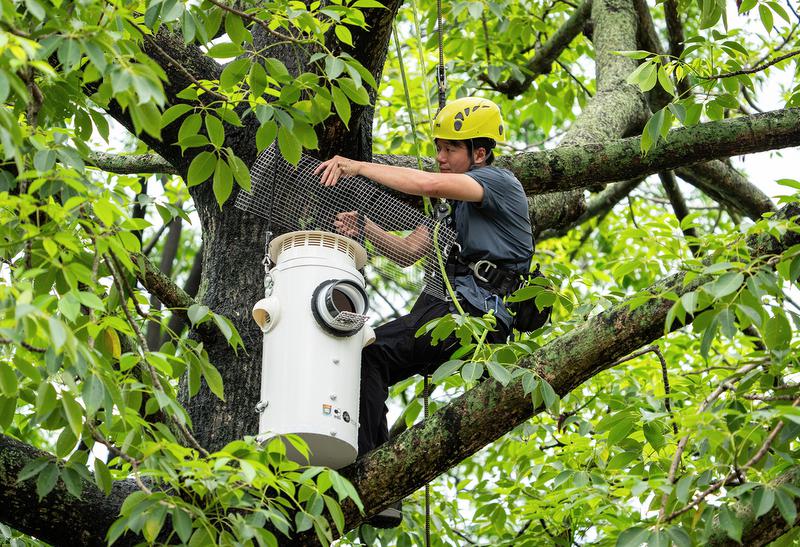
- 21 Sep 2025
In News:
Critically endangered yellow-crested cockatoos (Cacatuasulphurea) have established an unexpected refuge among Hong Kong’s urban landscape, including its parks and university campuses. Once native to Indonesia and East Timor, these snow-white birds with striking yellow crests now face multiple survival challenges, both globally and locally.
Population and Distribution
- The global wild population of yellow-crested cockatoos is estimated at up to 2,000 mature individuals, with around 10% residing in Hong Kong, largely as descendants of released or escaped caged birds.
- Historically, the species was widespread across central and eastern Indonesia and East Timor, but habitat loss has led to dramatic declines on many islands.
- In Hong Kong, they have adapted to urban life but depend on tree cavities for nesting, similar to their natural habitats.
Ecology and Behavior
- Appearance: Medium-sized cockatoo, predominantly white plumage, with a yellow or orange retractable crest.
- Habitat: Forests, forest edges, scrublands, and cultivated areas from sea level up to 1,500 meters.
- Diet: Omnivorous—seeds, fruits, nuts, berries, occasionally insects, small reptiles, and roots.
- Social Behavior: Monogamous, gregarious, and capable of mimicking sounds.
- Breeding Season: September to May.
Threats to Survival
- Habitat Loss: Typhoons, deforestation, and government-led tree trimming in urban areas reduce natural nesting sites.
- Illegal Pet Trade: Poaching continues to threaten wild populations in native habitats.
- Climate Change: Rising temperatures dry out forests, increasing susceptibility to fires and other environmental stresses.
Conservation Initiatives
To counter declining nesting opportunities, Hong Kong conservationists have implemented a practical solution: artificial nest boxes that replicate natural tree cavities.
Aflatoxin
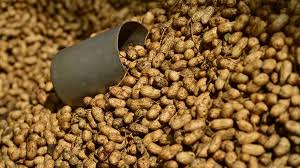
- 21 Sep 2025
In News:
Indian exporters have expressed concerns regarding delays by Indonesia in notifying aflatoxin contamination detected in groundnut shipments from India. This has raised issues about trade compliance and the need for timely communication in international agricultural trade.
Understanding Aflatoxins
- Aflatoxins are highly toxic substances classified as mycotoxins, produced by certain species of fungi. The main fungi responsible are Aspergillus flavus and Aspergillus parasiticus, which belong to the broader Aspergillus group.
- These fungi primarily thrive on agricultural crops, but can also be found in soil, decaying food, and compost. They develop as spores and form networks of microscopic filaments capable of growing on products such as grains, nuts, and other food items.
Sources and Conditions of Contamination
- Aflatoxin contamination commonly occurs in groundnuts, tree nuts, maize, rice, figs, spices, crude vegetable oils, and cocoa beans.
- Contamination can happen before harvest or during storage, especially in warm and humid conditions, which favor fungal growth.
Health Implications
Aflatoxins are genotoxic and carcinogenic, posing serious health risks to both humans and animals. Long-term exposure may lead to liver damage, immunosuppression, and increased cancer risk.
Modes of Human Exposure
- Dietary Intake: Consuming contaminated plant products like peanuts or animal products (meat, milk) from animals fed contaminated feed.
- Occupational Exposure: Farmers, processors, and other agricultural workers may inhale dust containing fungal spores during handling, harvesting, or processing contaminated crops.
This incident underscores the importance of stringent quality control and timely international reporting to prevent health risks and maintain confidence in agricultural trade.
Registered Unrecognised Political Parties (RUPPs)
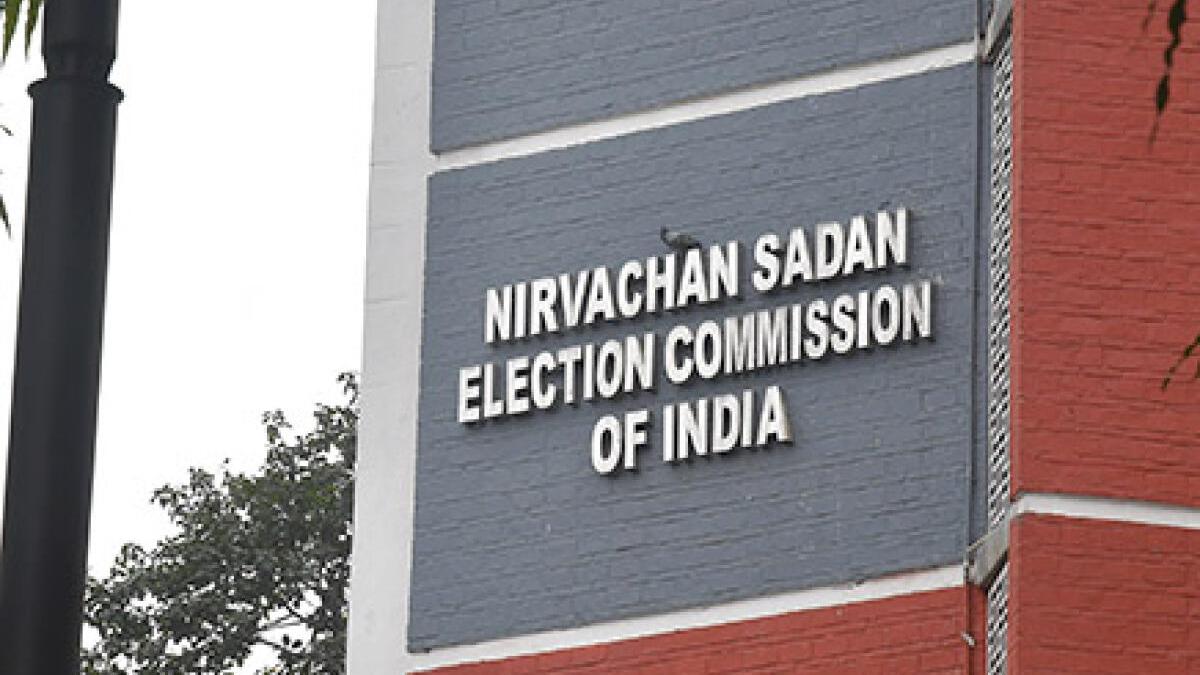
- 21 Sep 2025
In News:
The Election Commission of India (ECI) has de-listed 474 Registered Unrecognised Political Parties (RUPPs) for failing to comply with statutory norms, including not contesting elections in the last six years, as part of its ongoing efforts to clean up the electoral system. This move follows the first phase of de-listing, which removed 334 RUPPs.
About Registered Unrecognised Political Parties (RUPPs)
RUPPs are political entities that are registered with the ECI under Section 29A of the Representation of the People Act (RPA), 1951 but do not yet qualify as state or national parties. They may fall into the following categories:
- Newly registered parties.
- Parties that have not secured sufficient votes to gain state-level recognition.
- Parties that have never contested elections since registration.
Benefits for RUPPs include:
- Tax exemptions under Section 13A of the Income Tax Act, 1961.
- Eligibility for common poll symbols, subject to fielding at least 5% of candidates in state assembly elections.
- Permission to nominate up to 20 ‘star campaigners’ for election canvassing.
Obligations include:
- Contesting elections periodically.
- Filing annual audited accounts and contribution reports.
- Disclosing donations exceeding Rs. 20,000 and restricting cash donations above Rs. 2,000.
Failure to meet these obligations can result in de-listing, as seen in the recent action by the ECI.
Registration and Recognition of Political Parties
Political parties in India are registered with the ECI to avail legal and electoral benefits, including:
- Acceptance of voluntary contributions from individuals and private entities (except government companies).
- Preference in allotment of election symbols to candidates.
- Tax exemptions on donations under Section 13A of the Income Tax Act.
Registered parties that meet additional criteria may gain recognition as State or National Parties, with exclusive privileges:
- Reservation of a unique election symbol.
- Access to free broadcast facilities on Doordarshan and All India Radio.
- Higher campaign expenditure allowances.
- Free copies of electoral rolls before elections.
Criteria for Recognition
State Party: A political party is recognized as a state party if it meets any of the following conditions:
- Wins 3% of seats in the Legislative Assembly in general elections.
- Wins one Lok Sabha seat for every 25 seats allotted to the state.
- Secures at least 6% of votes in a state and wins one Lok Sabha or two Legislative Assembly seats.
- Secures 8% of votes in a state in Lok Sabha or Assembly elections.
National Party: A political party is recognized as a national party if it satisfies any of the following:
- Secures 6% of votes in four or more states in Lok Sabha or Assembly elections and has at least four Lok Sabha members.
- Holds 2% of total Lok Sabha seats with candidates from at least three states.
- Recognized as a state party in at least four states.
Recognition is subject to continuous compliance in subsequent elections; failure to meet the criteria can lead to loss of status.
Significance of De-listing
The de-listing of 474 RUPPs strengthens the electoral system by:
- Ensuring active participation of political parties in the democratic process.
- Promoting transparency in funding and campaign practices.
- Reducing the clutter of inactive or non-compliant parties, thereby making election management more efficient.
This move reflects the ECI’s proactive approach in maintaining a robust and credible electoral framework, which is essential for a healthy democracy in India.
INS Rajali
- 21 Sep 2025
In News:
The Indian Navy’s Eastern Naval Command hosted a two-day seminar on Long-Range Maritime Reconnaissance (LRMR) at INS Rajali, Arakkonam. The event underscored India’s growing maritime responsibilities, technological advancements, and strategic commitment to ensuring security in the Indian Ocean Region (IOR).
Objectives and Key Outcomes
The seminar brought together senior naval commanders, operational experts, and industry representatives, including from Boeing Ltd, to deliberate on the evolving role of LRMR platforms in safeguarding India’s maritime interests.
Key highlights included:
- Release of a compendium of scholarly papers on maritime domain awareness and surveillance.
- Discussions on the operational roles of Boeing P-8I Poseidon aircraft and High-Altitude Long Endurance (HALE) drones, such as the MQ-9B Sea Guardian, in anti-submarine warfare (ASW), multi-domain reconnaissance, and long-range surveillance.
- Recognition of the Navy’s drive to build indigenous capacity while maintaining strategic partnerships with global defence leaders to enhance maritime security cooperation.
INS Rajali: Strategic Maritime Aviation Base
INS Rajali, commissioned on March 11, 1992, is a premier Naval Air Station located near Arakkonam, Tamil Nadu, about 80 km west of Chennai.
- It is spread across 2,200 acres and houses over 4,700 personnel.
- Named after ‘Rajali’, a hawk native to Tamil Nadu’s coast, symbolizing vigilance and speed.
- It operates under the Eastern Naval Command and has the longest military runway in Asia, enabling operations of long-range aircraft.
- The station performs dual roles in operations and training, including hosting the Helicopter Training School (HTS).
INS Rajali has emerged as the hub of India’s maritime reconnaissance and surveillance operations, crucial for maintaining real-time situational awareness over the IOR.
INAS 312: A Milestone Achievement
The seminar also celebrated a historic milestone — the completion of 50,000 flying hours by INAS 312, the Navy’s premier Long-Range Maritime Reconnaissance Squadron based at INS Rajali.
- INAS 312 operates the Boeing P-8I Poseidon aircraft, a state-of-the-art platform known for anti-submarine warfare, surveillance, and maritime strike missions.
- The squadron’s operations have enhanced India’s ability to monitor sea lanes, detect hostile submarines, and secure trade routes across the Indo-Pacific.
- This achievement marks a first in Indian Naval Aviation history, reflecting the squadron’s professionalism and pivotal contribution to national security.
Technological Edge: Integration of LRMR Platforms
The integration of P-8I aircraft with MQ-9B Sea Guardian drones represents a transformative leap in India’s maritime surveillance ecosystem.
- These systems enable persistent intelligence gathering, real-time situational awareness, and high-endurance operations across vast oceanic stretches.
- The synergy between manned and unmanned assets significantly enhances Maritime Domain Awareness (MDA), ensuring rapid response to traditional and non-traditional threats, including piracy, smuggling, and humanitarian emergencies.
Strategic Significance
The LRMR initiative aligns with India’s vision of being a “Net Security Provider” in the Indo-Pacific.
By strengthening reconnaissance and surveillance capabilities, India is:
- Expanding its operational reach and deterrence posture.
- Enhancing interoperability with partner navies.
- Supporting Humanitarian Assistance and Disaster Relief (HADR) missions.
- Contributing to a Free, Open, and Rules-Based Indo-Pacific order.
Exercise Pacific Angel 2025
- 20 Sep 2025
In News:
India has joined the United States and Sri Lanka in Exercise Pacific Angel 2025, the largest multilateral disaster response and humanitarian assistance drill in the Indo-Pacific. The exercise signifies growing regional collaboration in humanitarian aid, disaster relief (HADR), and emergency preparedness amid increasing natural and geopolitical challenges in the Indian Ocean region.
About Exercise Pacific Angel 2025
- Host: Sri Lanka (Katunayake Air Base)
- Participants: United States, Sri Lanka, India, Australia, Bangladesh, Japan, and Maldives.
- Troop Strength: Nearly 90 U.S. and 120 Sri Lankan Air Force personnel, along with contingents and observers from partner nations.
- Assets Deployed:
- U.S.: Two C-130J aircraft
- Sri Lanka: Bell 412, B-212 helicopters, and a King Air 350 aircraft
Key Focus Areas
- Search and Rescue (SAR) operations
- Medical readiness and mass casualty response
- Aviation safety and engineering support
- Aeromedical evacuation drills and air mobility exercises
Linked Regional Drills and Strategic Context
The Pacific Angel series forms part of a broader network of U.S.-led multilateral exercises in South Asia aimed at improving interoperability, crisis response, and regional security.
1. Exercise Tiger Lightning 2025
- Host: Bangladesh
- Participants: Bangladesh Army and U.S. Army Pacific
- Objective: Strengthen counter-terrorism, peacekeeping, jungle warfare, and medical evacuation capabilities.
- Highlights: Simulation-based drills, rescue operations, and counterinsurgency coordination.
2. Exercise Tiger Shark 2025 (Flash Bengal Series)
- Host: Bangladesh
- Participants: Bangladesh Navy’s Special Warfare Diving & Salvage Unit, Para Commando Brigade, and U.S. Special Forces.
- Aim: Enhance maritime security, small-unit tactics, and special operations readiness.
- Training Components: Patrol boat handling, small-arms marksmanship, and maritime interdiction.
3. RQ-21 Blackjack UAS Program
- Location: Bangladesh
- Partnership: U.S. Army & Navy with Bangladesh Army and Navy.
- Purpose: Develop indigenous unmanned aerial surveillance capabilities for border monitoring, maritime domain awareness, and UN peacekeeping missions.
- Structure: Establishment of a joint Army-Navy UAS regiment.
Strategic and Geopolitical Significance
- Enhancing Humanitarian Preparedness:Pacific Angel 25 reinforces the ability of Indo-Pacific nations to jointly respond to natural disasters such as cyclones, tsunamis, and earthquakes, ensuring rapid humanitarian assistance and coordination.
- Building Regional Trust and Interoperability:Joint training fosters mutual understanding, operational coordination, and shared standard operating procedures (SOPs) among participating air forces and disaster response agencies.
- Geostrategic Balancing:The U.S. engagement through multilateral drills in Sri Lanka and Bangladesh, both immediate neighbours of India, signals Washington’s intent to expand its strategic presence in South Asia. This move is viewed within the broader Indo-Pacific strategy aimed at maintaining a “free, open, and resilient region” while counterbalancing China’s growing influence.
- India’s Role:India’s participation aligns with its Neighbourhood First, Security and Growth for All in the Region (SAGAR), and Act East policies. It also strengthens HADR diplomacy, reinforcing India’s image as a net security provider in the Indian Ocean.
Draft Civil Drone (Promotion and Regulation) Bill, 2025
- 20 Sep 2025
In News:
- The Ministry of Civil Aviation (MoCA) has released the draft Civil Drone (Promotion and Regulation) Bill, 2025 for public consultation.
- The legislation seeks to create a comprehensive legal framework for the operation, promotion, and regulation of Unmanned Aircraft Systems (UAS) in India, replacing the existing Drone Rules, 2021.
Objective
- The Bill aims to balance innovation with accountability—promoting the growth of India’s drone ecosystem while ensuring public safety, national security, and privacy.
- It aligns with the government’s vision of leveraging drone technology for governance, logistics, agriculture, and surveillance under the Digital Indiaand Make in India initiatives.
Key Provisions
1. Regulatory Authority
- The Directorate General of Civil Aviation (DGCA) will serve as the principal regulator for drone operations.
- The Ministry of Civil Aviation (MoCA) will oversee policy, promotion, and implementation aspects.
2. Scope and Exemptions
- The Bill applies to all civil unmanned aircraft systems (UAS).
- Exempted: UAS operated by the Armed Forces (Army, Navy, Air Force) and those weighing above 500 kilograms.
3. Registration and Certification
- Mandatory Registration: Every drone must obtain a Unique Identification Number (UIN) from DGCA.
- Type Certification: Manufacturing, sale, or operation of drones requires DGCA-approved Type Certificates ensuring safety and airworthiness.
- Remote Pilot Certification: Operators must hold a valid remote pilot license from DGCA or authorized entities.
4. Airspace Regulation — Digital Sky Zones
To ensure safe integration of drones into civil airspace, the Bill formalizes Digital Sky Zones:
- Green Zone: Free flying permitted without prior clearance.
- Yellow Zone: Requires Air Traffic Control (ATC) clearance.
- Red Zone: Restricted areas; operations allowed only with Central Government approval.
5. Safety, Security, and Insurance
- Mandatory third-party insurance for all drone operators to cover liability.
- Safety Features: Anti-tampering, traceability mechanisms, and airworthiness compliance are compulsory.
- Victim Compensation:
- ?2.5 lakh for death
- ?1 lakh for grievous injury
- Claims to be adjudicated by the Motor Accident Claims Tribunal.
6. Penalties and Enforcement
The Bill introduces stringent penalties to ensure responsible drone usage:
- Imprisonment: 3 months to 3 years.
- Fine: Up to ?1 lakh, or both.
- Violations of the Bharatiya Nyaya Sanhita (BNS), 2023 and Bharatiya Nagrik Suraksha Sanhita (BNSS), 2023related to drone misuse will be cognisable offences.
- Confiscation Powers: DGCA officers, authorized personnel, or police may seize drones, electronic devices, or records if rules are violated.
7. Industry and Stakeholder Involvement
The Bill encourages industry participation and innovation while enforcing compliance. The Drone Federation of India noted that the previously liberalised Drone Rules, 2021 have now been made more stringent in response to security and safety concerns.
Significance
- Strengthens legal enforcement and ensures accountability in drone operations.
- Protects national airspace integrity and citizens’ privacy.
- Supports India’s goal of becoming a global drone hub by 2030 — an industry projected to reach USD 11 billion in value.
- Ensures balance between promotion and regulation, crucial for sectors like agriculture, logistics, disaster management, and infrastructure monitoring.
Aquamonitrix – Portable Ion Chromatograph
- 20 Sep 2025
In News:
A team of scientists from the University of Tasmania, Australia, in collaboration with Aquamonitrix, has developed a portable ion chromatograph that enables real-time, on-site detection of nitrate and nitrite levels in environmental samples.
This innovative device — named Aquamonitrix — is a low-cost, field-deployable version of laboratory ion chromatographs, designed to make analytical chemistry more accessible, sustainable, and educationally enriching.
What is Aquamonitrix?
Aquamonitrix is a compact, low-pressure ion chromatograph capable of separating and detecting anions such as nitrate and nitrite outside traditional laboratory settings. It offers an eco-friendly, battery-operated, and user-friendly alternative to expensive laboratory chromatographs, making it particularly suitable for educational institutions and field researchers.
How It Works
- Sample Preparation: Soil pore water — water held between soil particles — is extracted using a portable vacuum pump, filtered on-site, and directly injected into the device.
- Separation: The chromatograph employs a short column through which a sodium chloride (NaCl) solution acts as a carrier, separating anions based on their chemical properties.
- Detection: Equipped with a UV absorbance detector, it identifies nitrate and nitrite by their distinct absorption peaks in the low UV region.
- Power and Portability: The device operates on a battery, enabling use in remote or field environments such as rivers, greenhouses, and water treatment plants.
Applications and Research Potential
- Environmental Monitoring: Real-time tracking of nitrate and nitrite in rivers, soil, and groundwater.
- Nitrogen Cycle Analysis: Can measure nitrite, nitrate, and ammonia, supporting studies on nutrient conversion in soil and aquatic systems.
- Water Treatment and Agriculture: Enables long-term nutrient monitoring in greenhouses and water management projects.
- Future Development: The research team is working on an arsenic-detecting variant of the instrument — critical for groundwater safety in countries like India and Bangladesh, where arsenic contamination remains a pressing issue.
Significance and Impact
- The Aquamonitrix portable ion chromatograph represents a significant step towards democratizing scientific tools by making high-quality analytical instruments more accessible, affordable, and field-compatible.
- It demonstrates how innovation in instrumentation can serve multiple goals — advancing STEM education, promoting environmental sustainability, and supporting grassroots-level scientific research.
- By integrating education, technology, and environmental stewardship, this innovation aligns with the United Nations Sustainable Development Goals (SDGs) — particularly SDG 4 (Quality Education), SDG 6 (Clean Water and Sanitation), and SDG 13 (Climate Action).
Frontier Tech Repository
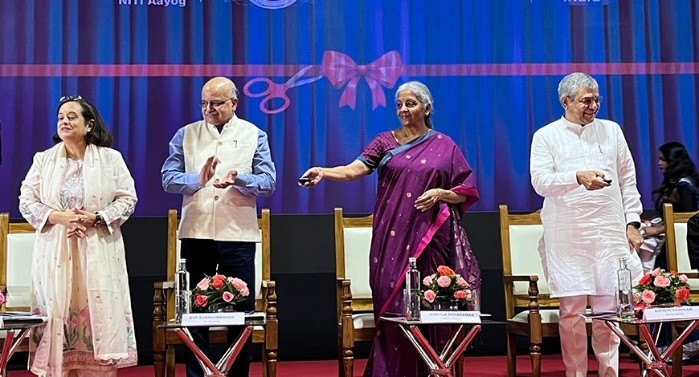
- 20 Sep 2025
In News:
- In a major stride towards achieving Viksit Bharat (Developed India) by 2047, NITI Aayog has launched two landmark initiatives under its Frontier Tech Hub — the ‘AI for Viksit Bharat Roadmap: Opportunity for Accelerated Economic Growth’ and the ‘Frontier Tech Repository’.
- These initiatives aim to harness the transformative potential of Artificial Intelligence (AI) and other frontier technologies to catalyse inclusive growth and innovation across sectors.
AI for Viksit Bharat Roadmap
The AI for Viksit Bharat Roadmap, launched by Finance Minister Smt. Nirmala Sitharaman and Minister for Electronics & IT Shri Ashwini Vaishnaw, outlines a practical and strategic framework to accelerate India’s AI-led growth. It focuses on two primary levers:
- Accelerating AI adoption across industries to boost productivity, efficiency, and innovation.
- Transforming Research and Development (R&D) through Generative AI, enabling India to leapfrog into global innovation leadership.
The roadmap emphasizes AI’s potential to drive robust, inclusive, and technology-driven economic growth, while underscoring the need for a collaborative ecosystem involving government, industry, academia, and startups.
Frontier Tech Repository
- Complementing the roadmap, the Frontier Tech Repository is a digital knowledge platform that showcases over 200 real-world impact stories across four critical sectors — Agriculture, Healthcare, Education, and National Security.
- It demonstrates how states, startups, and innovators are using technology to transform governance and improve livelihoods at the grassroots level.
- The repository serves as both a learning resource and a replication model, helping policymakers and administrators identify scalable frontier technology solutions.
Frontier 50 Initiative
- To ensure widespread adoption, NITI Aayog launched the Frontier 50 Initiative, which will support 50 Aspirational Districts and Blocks in selecting and deploying frontier technologies showcased in the repository.
- The goal is to accelerate service saturation across key Aspirational District Programme (ADP) and Aspirational Block Programme (ABP) themes — such as education, healthcare, and livelihood generation — through tech-enabled governance.
NITI Frontier Tech Impact Awards
- To further motivate innovation, NITI Aayog announced the Frontier Tech Impact Awards, which will recognize three states excelling in the use of technology for improving governance, education, health, and livelihoods. These states will receive support to scale their initiatives and create measurable, transformative outcomes.
About the NITI Frontier Tech Hub
- The Frontier Tech Hub serves as NITI Aayog’s platform to anticipate mega technological shifts and strategize India’s preparedness to harness emerging technologies for inclusive growth, supply chain resilience, and national security.
- It brings together experts from government, industry, and academia to assess opportunities and risks associated with frontier technologies such as AI, quantum computing, and biotechnology, thereby shaping policies for technology-driven development.
Eustoma
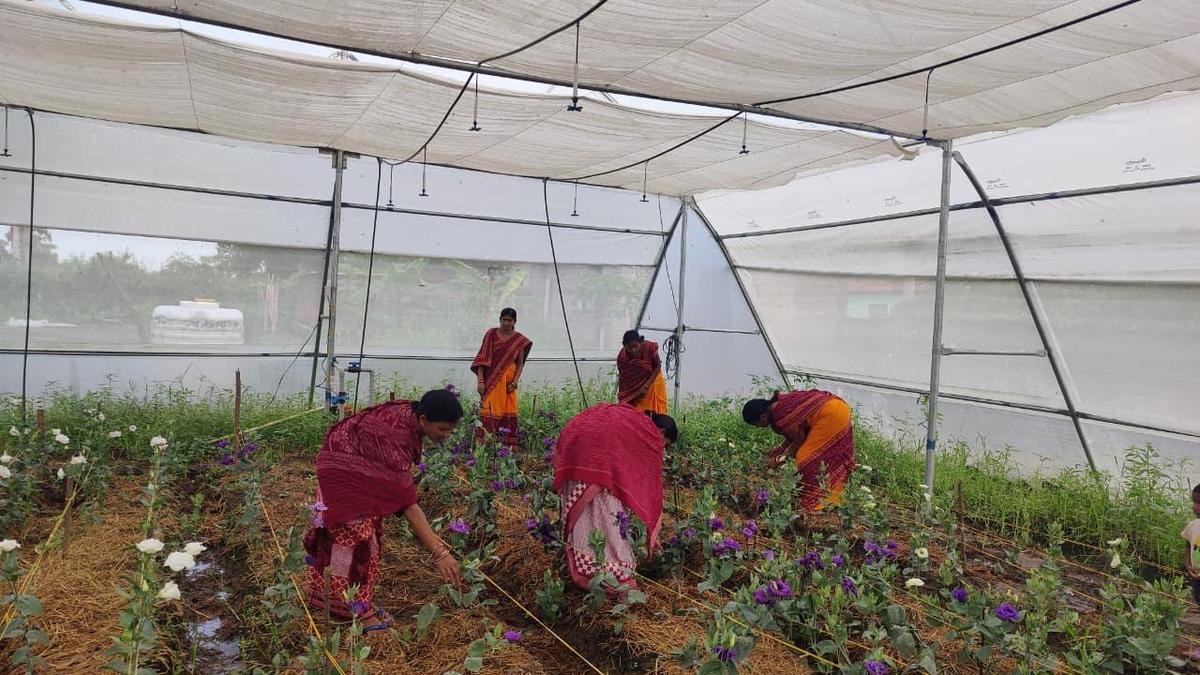
- 20 Sep 2025
In News:
The National Botanical Research Institute (NBRI), under the Council of Scientific and Industrial Research (CSIR), has achieved a remarkable breakthrough by successfully cultivating the Eustoma flower in Odisha. This marks the first instance of the exotic ornamental species blooming locally in the state, which until now depended solely on imports for its availability.
About Eustoma
- Scientifically known as Eustoma grandiflorum and commonly referred to as Lisianthus, Prairie Gentian, or Texas Bluebell, the flower is a perennial herbaceous ornamental species native to the grasslands of North America — including Mexico, the southern United States, the Caribbean, and northern South America. Globally, it ranks among the top ten popular cut flowers due to its elegance and commercial appeal.
Distinctive Features
- Eustoma is renowned for its rose-like blossoms, vibrant color range, long stems, and extended vase life, which have earned it the title of the “next rose” in the international flower trade. Its blooms exhibit a rich palette of colors — from pure white to shades of pink, purple, and blue — making it highly desirable for cut flower arrangements and potted ornamental use.
Growth Conditions and Habitat
- The plant thrives in warm, sunny climates and prefers well-drained yet moisture-retentive soil, enriched with garden compost or well-rotted manure. In its natural habitat, it grows in grasslands and disturbed areas, making it adaptable to varied environmental conditions when cultivated with appropriate care.
Significance of the Odisha Breakthrough
- The successful cultivation of Eustoma in Odisha represents a scientific and economic milestone. Previously, the flower had to be imported, which limited access for local floriculturists and increased costs. With NBRI’s intervention, local propagation techniques have now been developed, enabling indigenous production of this high-value ornamental crop.
- By adopting Eustoma cultivation, farmers in Odisha and other states with similar climatic conditions can benefit from higher income potential due to the flower’s global demand and premium market value.
Broader Implications
- The success underscores India’s growing capabilities in plant biotechnology, floriculture innovation, and agro-based entrepreneurship. It aligns with the government’s broader objectives of Atmanirbhar Bharat (self-reliant India) by reducing dependency on imports and promoting sustainable rural livelihoods through scientific advancements.
Polypropylene and Bioethanol Initiatives in Assam
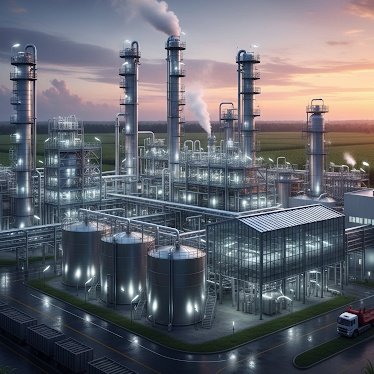
- 19 Sep 2025
In News:
Prime Minister Narendra Modi recently laid the foundation stone for a Polypropylene (PP) Plant and inaugurated a Bioethanol Plant at Numaligarh Refinery Limited (NRL) in Golaghat, Assam. These projects mark a major step in strengthening India’s energy security, promoting clean energy, and enhancing industrial development in the Northeast.
About Polypropylene
Polypropylene (PP) is a thermoplastic polymer produced by the polymerization of propylene. Belonging to the polyolefin family, it is a lightweight, flexible, and heat-resistant material widely used in modern industries.
Key Properties:
- Chemical resistance: Highly resistant to acids, alkalis, and solvents, making it ideal for packaging cleaning products.
- Lightweight and durable: One of the lightest commodity plastics, suitable for high-temperature applications.
- Flammable: Requires controlled processing and handling.
- Insulating properties: Offers strong electrical insulation, used in casings, cables, and medical equipment.
Applications:
Polypropylene is extensively used in packaging, textiles, ropes, carpets, medical kits, automotive components, and agricultural tools. Its versatility makes it integral to both industrial and domestic use.
About the Polypropylene Plant at NRL
The Polypropylene Plant at Numaligarh Refinery aims to enhance India’s petrochemical capacity and reduce dependence on imports. It will serve as a key catalyst for industrial growth in Assam and contribute to the ‘Make in Assam’ and ‘Make in India’ initiatives.The plant will:
- Generate significant employment opportunities for the local population.
- Strengthen manufacturing sectors linked to plastics, textiles, and medical equipment.
- Promote regional economic diversification in the Northeast.
The Bioethanol Plant and Clean Energy Push
The newly inaugurated Assam Bioethanol Plant, also at NRL, produces bioethanol from bamboo—a sustainable feedstock abundantly available in the region. This initiative supports India’s Ethanol Blending Programme and aims to reduce reliance on imported fossil fuels.
Key Benefits:
- Encourages bamboo cultivation, benefitting farmers and tribal communities.
- Establishes bamboo chipping units and ensures steady raw material supply.
- Generates employment for thousands of people and boosts the rural economy.
- Promotes green energy and circular economy principles.
The government has allocated around ?200 crore annually to support bamboo-based ethanol production, which will provide a long-term economic boost to the region.
Strategic Significance
Prime Minister Modi emphasized that energy and semiconductors are two critical pillars of India’s self-reliance journey. Assam, through projects like these, is emerging as a key energy hub.
- India is now among the top five countries in solar power capacity.
- The government has launched the National Deepwater Exploration Mission to explore domestic oil and gas reserves under the “Samudra Manthan” initiative.
- A semiconductor factory worth ?27,000 crore is being set up in Morigaon, positioning Assam as a vital node in India’s electronics manufacturing ecosystem.
Cultural and Socio-Economic Integration
Beyond industrial growth, these projects are part of a broader vision to integrate Assam’s cultural heritage with modern development. The state’s traditional identity—symbolized by the Gamosa, Eri, and Muga silk—will now extend to polypropylene-based textiles and industries.
Initiatives such as Mission Basundhara, welfare schemes for tea garden workers, and the development of tourism circuits like the MaaKamakhya Corridor underscore inclusive growth in the region.
Centre for Cellular and Molecular Biology
- 19 Sep 2025
In News:
Scientists at the CSIR–Centre for Cellular and Molecular Biology (CCMB), Hyderabad, have uncovered a crucial mechanism explaining how white blood cells (WBCs) rapidly alter their internal structure to combat pathogens. The discovery reveals how immune cells adapt their cytoskeletons to move and respond swiftly during immune defence.
The Discovery
A research team led by Dr. Saikat Chowdhury at CCMB discovered how white blood cells form flat protrusions in the direction of pathogens, enabling them to move and engulf harmful microbes.
This process occurs within microseconds, allowing immune cells to dynamically remodel their internal structure to execute defence responses. The findings were published in the journal Nature Structural & Molecular Biology.
Mechanism Behind the Discovery:
- The shape and movement of cells depend on a dense, branched actin network near the cell membrane.
- Actin, a structural and dynamic protein, enables cells to push the membrane outward, forming protrusions.
- The CCMB team found that SPIN90, a regulatory protein, plays a pivotal role in generating new actin meshworks.
- SPIN90 works as a dimer with another protein complex, Arp2/3, to initiate the growth of new actin filaments in two opposite directions, separated by about 150°.
- These newly formed filaments serve as scaffolds, helping the cell reshape itself or move toward invading pathogens.
According to Dr. Chowdhury, SPIN90’s ability to build actin filaments bidirectionally helps cells create adaptable cytoskeletal frameworks, shedding light on how cells remodel themselves in both health and disease.
Scientific Significance
This discovery enhances understanding of:
- Cellular movement and immune response mechanisms.
- Cytoskeletal dynamics—a core process in cellular biology.
- Pathophysiological processes, such as cancer metastasis, immune disorders, and wound healing, where cell shape and motility are crucial.
It also opens new avenues for biomedical research in designing therapies that target cell motility and immune regulation.
About the CSIR–Centre for Cellular and Molecular Biology (CCMB)
- Established: 1977
- Location: Hyderabad, Telangana
- Parent Organization: Council of Scientific and Industrial Research (CSIR) under the Ministry of Science & Technology, Government of India
- Designation: UNESCO-recognized “Centre of Excellence” under the Global Molecular and Cell Biology Network
Mandate and Objectives:
- Conduct high-quality basic and applied research in frontier areas of modern biology.
- Promote centralized national facilities for cutting-edge biological research.
- Provide training and capacity-building for students and scientists in molecular biology, genomics, proteomics, and bioinformatics.
- Facilitate collaborations with national and international research institutions.
Research Areas:
- Genetics and Genomics
- Molecular Medicine and Biotechnology
- Immunology and Cell Biology
- Bioinformatics and Systems Biology
- Environmental and Agricultural Biotechnology
CCMB’s research integrates fundamental and translational science, addressing challenges in human health, agriculture, and environmental sustainability.
Doctrine of Escheat
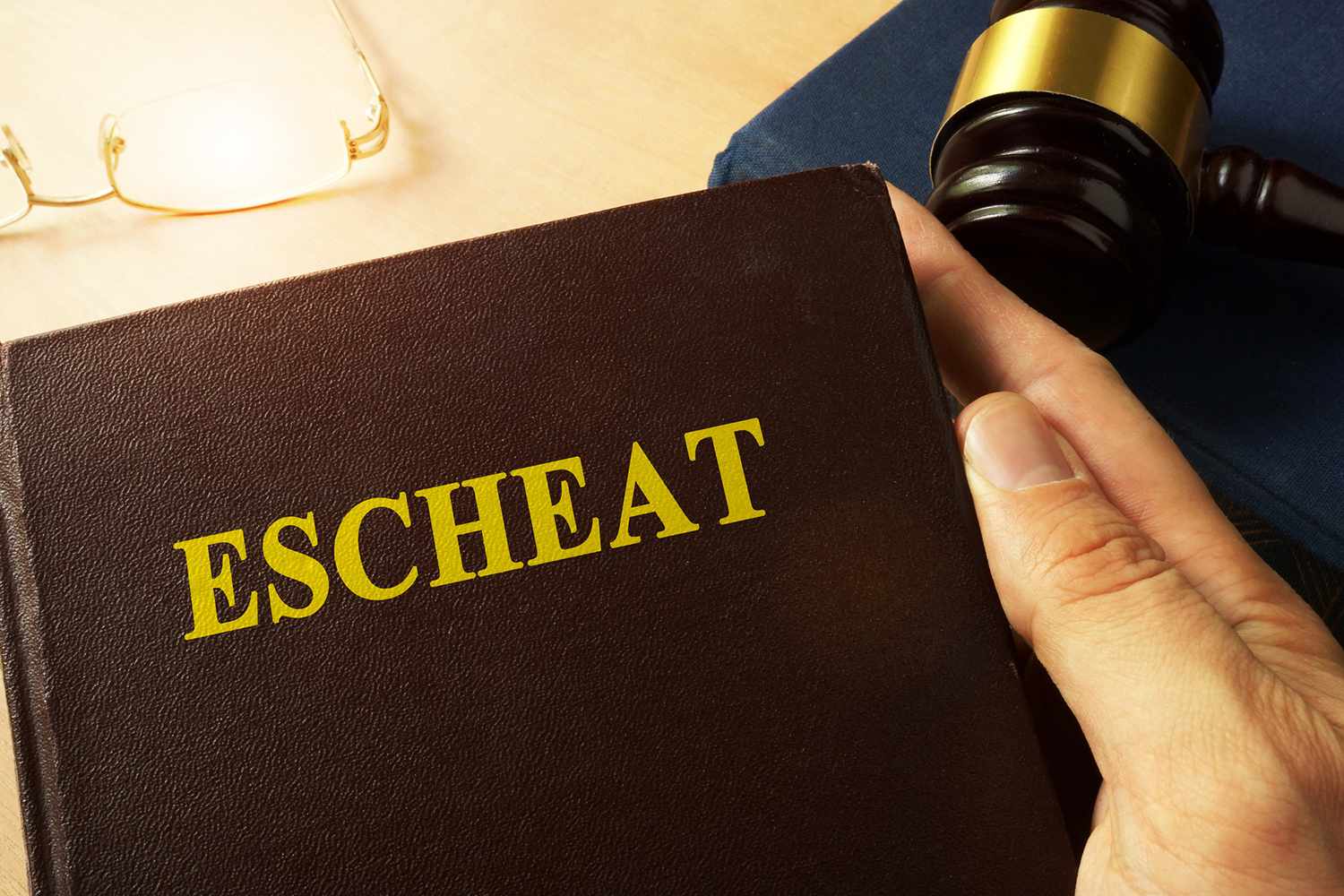
- 19 Sep 2025
In News:
The Supreme Court of India has recently ruled that a State Government cannot invoke the Doctrine of Escheat under Section 29 of the Hindu Succession Act, 1956, when a valid Will has been executed and probate has been granted by a competent court. The judgment underscores that the principle of escheat applies only as a last resort, when an individual dies intestate (without a Will) and without legal heirs.
What is the Doctrine of Escheat?
The Doctrine of Escheat is a long-standing legal principle ensuring that no property remains ownerless. When a person dies without a Will and without any legal heirs, ownership of the property reverts to the State.
This doctrine safeguards social and legal order, ensuring that property does not remain unclaimed or misused.
Situations Covered Under Escheat:
- Death without a Will (Intestate): When a person dies without making a valid Will and leaves no heirs.
- Unclaimed or Abandoned Property: When ownership cannot be established for a prolonged period.
The underlying idea is that property must always have an identifiable owner, and in the absence of heirs, the State becomes the ultimate owner.
Historical Background
- The term “escheat” originates from the Old French word “eschete”, meaning “to fall to.”
- The concept dates back to the feudal system of medieval Europe, where land held by a tenant reverted to the lord if the tenant died without an heir or was convicted of crimes such as treason.
- Over time, this right passed from feudal lords to the monarch or the state, ensuring continuous control over land and preventing property from becoming ownerless.
Doctrine of Escheat in Modern Legal Systems
In contemporary jurisprudence, escheat prevents property from remaining in legal limbo. The State assumes ownership of such assets, either permanently or temporarily, until legitimate claimants are found.
Different countries have codified laws governing this process, ensuring fairness and transparency.
Doctrine of Escheat in India
In the Indian legal framework, the doctrine operates through two main provisions:
- Article 296 of the Constitution of India:Provides that any property that escheats or lacks legal ownership vests in the State or Union, depending on where the property is situated.
- Section 29 of the Hindu Succession Act, 1956:States that if a Hindu dies intestate and without any legal heirs, the property escheats to the Government, which assumes ownership subject to all legal obligations.
Supreme Court’s Observation
In the recent judgment, the Supreme Court held that:
- The Doctrine of Escheat is a remedy of last resort and cannot be invoked when a valid Will exists.
- Once a Will is probated (i.e., validated by a competent court), the State has no locus to challenge the testamentary disposition under the garb of escheat.
- The testator’s intent must prevail, and the property should devolve strictly as per the terms of the Will.
This ruling reinforces the sanctity of testamentary freedom and clarifies the limited applicability of escheat provisions.
Significance of the Ruling
- Protects Individual Property Rights: Upholds the right of individuals to dispose of their property through a valid Will.
- Limits State Overreach: Prevents arbitrary claims by the State over private property.
- Clarifies Legal Interpretation: Defines the precise scope of Section 29 of the Hindu Succession Act and Article 296 of the Constitution.
- Ensures Legal Certainty: Strengthens property succession jurisprudence in India.
Carlsberg RidgeRegion
- 19 Sep 2025
In News:
India has secured an exploration contract from the International Seabed Authority (ISA) to explore polymetallic sulphide deposits in the Carlsberg Ridge region of the north-western Indian Ocean. The agreement marks a major step in India’s pursuit of deep-sea resource development and its broader vision under the Deep Ocean Mission.
About the Agreement
- The exploration contract grants India the right to survey and explore an area of approximately 3,00,000 square kilometres in the Carlsberg Ridge, a tectonically active region rich in polymetallic sulphides — deposits containing valuable metals such as copper, zinc, gold, silver, and rare elements.
- The International Seabed Authority (ISA), an autonomous body under the United Nations Convention on the Law of the Sea (UNCLOS), regulates mineral exploration and exploitation activities in international seabed areas beyond national jurisdictions.
- This licence enhances India’s presence in seabed resource exploration, complementing its earlier exploration area for polymetallic nodules in the Central Indian Ocean Basin.
About Carlsberg Ridge
- The Carlsberg Ridge is a mid-oceanic ridge — a divergent plate boundary — located in the western Indian Ocean.
- It extends from the triple junction of the African, Indian, and Australian plates, connecting to the Mid-Indian Ridge, and runs northwest toward the Gulf of Aden.
- The ridge acts as a tectonic boundary between the Somali Plate and the Indian Plate.
- Geographical features:
- Lies at an average depth of 6,000–12,000 feet (1,800–3,600 m) below sea level.
- Rises about 7,000 feet (≈2,100 m) above the surrounding seafloor.
- Extends westward near Socotra Island, eventually linking with the East African Rift System via the Gulf of Aden.
- It is one of the most prominent mid-ocean ridge systems in the Indian Ocean, characterized by frequent seismic activity and hydrothermal vents, which are potential sources of metal-rich sulphide minerals.
Significance of the Exploration
- Strategic Resource Security:Polymetallic sulphides contain economically vital metals like copper, zinc, gold, and silver, essential for clean energy technologies, electronics, and strategic industries.
- Technological Advancement:The project supports India’s Deep Ocean Mission, fostering indigenous capability in deep-sea mining, remotely operated vehicles (ROVs), and underwater robotics.
- Scientific and Environmental Research:Exploration in the Carlsberg Ridge will advance understanding of seafloor geology, hydrothermal systems, and biodiversity in deep-sea environments.
- Geopolitical and Economic Leverage:Strengthens India’s position in global ocean governance and the blue economy, ensuring equitable access to seabed resources.
About the International Seabed Authority (ISA)
- Headquarters: Kingston, Jamaica
- Established: 1994 under UNCLOS (1982)
- Mandate: Regulates mineral-related activities in the “Area” — the seabed and ocean floor beyond national jurisdiction — ensuring that exploration and exploitation are conducted for the benefit of mankind while protecting the marine environment.
Exercise Pacific Reach 2025

- 19 Sep 2025
In News:
The Indian Navy’s latest indigenously designed and constructed Diving Support Vessel (DSV), INS Nistar, is participating in the multinational Exercise Pacific Reach 2025 in Singapore, marking a key step in strengthening India’s naval cooperation and submarine rescue capabilities.
About Exercise Pacific Reach 2025
- Exercise Pacific Reach is a biennial multinational naval exercise hosted by Singapore, with the 2025 edition witnessing the participation of over 40 nations.
- The exercise focuses on submarine rescue operations, interoperability, and sharing of best practices among participating navies.
- It is conducted in two major phases:
- Harbour Phase:
- Involves in-depth discussions on submarine rescue systems.
- Includes Subject Matter Expert Exchanges (SMEE), a medical symposium, and cross-deck visits among participating nations.
- Aims to enhance coordination in rescue procedures and underwater medical responses.
- Sea Phase:
- Conducted in the South China Sea, featuring multiple intervention and rescue operations.
- INS Nistar and Submarine Rescue Unit (East) will collaborate with other international assets to simulate real-world submarine rescue missions and deep-sea operations.
The exercise underscores the growing importance of multilateral maritime cooperation in ensuring submarine safety, operational interoperability, and humanitarian response readiness in the Indo-Pacific region.
INS Nistar: A Technological Milestone in Naval Capability
- Commissioned on: 18 July 2025
- Built by: Hindustan Shipyard Limited (HSL), Visakhapatnam
- Under: Ministry of Defence’s ‘Aatmanirbhar Bharat’ initiative
- INS Nistar is designed to act as a mothership (MoSHIP) for Deep Submergence Rescue Vehicles (DSRVs) — a critical capability for submarine rescue and deep-sea support operations.
- The vessel exemplifies India’s indigenous shipbuilding prowess and self-reliance in complex maritime technologies.
Key Technical Features and Capabilities:
- Integrated Saturation Diving System (ISDS):Enables diver deployment up to 300 meters depth, facilitating underwater repairs, salvage, and rescue missions.
- Remotely Operated Vehicles (ROVs):Deployed for underwater surveillance and recovery in deep-sea environments.
- Side Scan Sonar:Assists in locating submerged vessels, wreckage, or obstacles on the seabed.
- Integrated Platform Management System (IPMS):Streamlines the operation and monitoring of onboard systems for greater efficiency and safety.
- Submarine Rescue System:A critical asset for submarine emergency response, ensuring timely and safe evacuation of personnel from disabled submarines.
Prime Minister Inaugurates Development Projects Amid Ethnic Tensions in Manipur

- 18 Sep 2025
In News:
Recently, Prime Minister Narendra Modi visited Imphal, Manipur, inaugurating and laying the foundation for multiple development projects aimed at improving infrastructure, governance, and socio-economic opportunities in the state.
The visit comes in the backdrop of ethnic tensions that erupted in May 2023 between the Meitei community in the Imphal valley and the Kuki-Zo tribes in the surrounding hills, which claimed over 250 lives and displaced more than 60,000 people.
Key Development Initiatives
- Infrastructure and Connectivity:
- Manipur Urban Roads Project: Investment of over ?3,600 crore to enhance urban road connectivity in Imphal.
- Jiribam–Imphal Railway Line: A ?22,000 crore project to connect Imphal to India’s national rail network.
- Imphal Airport Expansion: ?400 crore investment and inauguration of helicopter services to boost air connectivity.
- Civil Secretariat (?538 crore) and Police Headquarters (?101 crore) inaugurated to improve governance and law enforcement.
- Digital and IT Initiatives:Manipur Infotech Development Project aims to strengthen the state’s IT and startup ecosystem, creating employment and entrepreneurial opportunities.
- Women Empowerment:
- Four new Ima Markets (women-only markets) inaugurated, reinforcing the state’s tradition of women-led commerce.
- Construction of working women’s hostels at nine locations to support education and employment for women.
- Sports and Culture:
- Support for the National Sports University and Khelo India initiatives.
- Promotion of polo via the Marjing Polo Complex, featuring the world’s tallest polo statue.
Ethnic Conflict and Unresolved Issues
The conflict stems from the Meitei community’s demand for Scheduled Tribe (ST) status, opposed by Kuki-Zo groups. ST recognition would grant Meiteisconstitutional safeguards, including reservations in jobs, education, and political representation, and land rights in hill areas. Key unresolved issues include:
- Rehabilitation of Displaced Families: Over 280 relief camps sheltering around 57,000 people, some displaced for more than two years.
- Restrictions on Movement: Militarized buffer zones between valley and hill districts continue to limit free movement and access to services.
- Border Concerns: Porous border with Myanmar raises issues of cross-border migration, leading to the scrapping of the Free Movement Regime.
- Political Vacuum: The resignation of the Chief Minister and imposition of President’s Rule have created governance challenges.
- Dialogue Deficit: Despite reduced violence since late 2024, there is no sustained dialogue between Meitei and Kuki-Zo communities.
Demand for Separate Administration
The Kuki-Zo Council seeks administrative separation of hill areas as a Union Territory under Article 239A of the Constitution, while Meitei organizations like COCOMI oppose this, citing threats to territorial integrity.
Way Ahead
The Prime Minister emphasized the need to strengthen dialogue between the hill and valley districts to foster social harmony. Sustainable peace in Manipur requires:
- Inclusive dialogue and neutral mediation between Meitei and Kuki-Zo communities.
- Rehabilitation of displaced families with dignity and livelihood support.
- Balanced border management to address cross-border migration while respecting tribal ties.
- Strengthening local governance and administrative institutions to restore trust.
Strategic Significance
Infrastructure, IT, and women-centric initiatives are not only essential for socio-economic development but also align with the Act East Policy, facilitating regional integration and economic collaboration with Southeast Asia. Ensuring peace and development in Manipur is critical for maintaining national unity, regional stability, and long-term social cohesion.
CBSE Provides Partial Relief on APAAR ID Submission for Board Students
- 18 Sep 2025
In News:
The Central Board of Secondary Education (CBSE) has recently announced partial relaxations for schools regarding the submission of Automated Permanent Academic Account Registry (APAAR) IDs linked to the List of Candidates (LOC) for Classes 10 and 12 board examinations. The move comes in response to multiple representations from schools highlighting technical and administrative challenges.
About APAAR
APAAR, launched under the National Education Policy (NEP) 2020 and aligned with the National Credit and Qualifications Framework (NCrF), aims to assign every student in India a unique 12-digit lifelong academic identity. Key objectives include:
- Consolidation of all academic achievements, such as marksheets, certificates, and co-curricular accomplishments, in a single digital record.
- Facilitating credit transfers, mobility between institutions, and recognition of prior learning.
- Enhancing flexibility in education and supporting seamless integration with the Academic Bank of Credits (ABC).
Integration with Academic Bank of Credits
The Academic Bank of Credits (ABC), conceptualized under NEP 2020, serves as a digital repository of students’ academic records, enabling storage, transfer, and redemption of credits across recognized institutions. Integrated with APAAR, it allows students to move between schools and higher education institutions without repeatedly submitting physical certificates, thus promoting educational mobility and continuity.
Challenges in APAAR Implementation
Since its rollout, schools have reported several hurdles in generating APAAR IDs:
- Technical integration issues between school portals and the APAAR system.
- Mismatches between school records and Aadhaar-linked student data.
- Time delays due to correction or updating processes.
- Lack of parental consent, often arising from privacy concerns.
CBSE’s Guidelines and Partial Relaxations
To address these challenges, CBSE has provided the following instructions for schools while submitting LOCs:
- Parental Consent Denial: If APAAR IDs cannot be generated due to refusal of parental consent, schools must retain a copy of the consent refusal and mark the entry in the LOC as “REFUSED”.
- Technical or Other Issues: For IDs that cannot be generated due to technical or administrative reasons, schools should mark the LOC entry as “NOGEN”.
- All Other Cases: Wherever feasible, APAAR IDs should be indicated in the LOC.
CBSE has also activated an online module for Children With Special Needs (CWSN), enabling schools to apply for various examination-related exemptions. Examination forms for private candidates of Classes 10 and 12 have been consolidated along with the LOC submission schedule to ensure clarity and timely compliance.
Support Measures
CBSE has emphasized that these relaxations are intended to ensure smooth and error-free LOC submission within the stipulated timelines. Schools facing further difficulties are advised to reach out to their respective regional CBSE offices for assistance.
Significance
The APAAR initiative represents a key step toward a digital, lifelong academic identity for Indian students, enhancing transparency, mobility, and integration with the Academic Bank of Credits. CBSE’s temporary relaxations reflect a pragmatic approach to smooth implementation while addressing operational challenges faced by schools.
India’s Support for the Two-State Solution and UN Resolution on Palestine
- 18 Sep 2025
In News:
- India has reaffirmed its principled support for the peaceful resolution of the Israeli-Palestinian conflict by voting in favour of the United Nations General Assembly resolution endorsing the ‘New York Declaration’.
- The resolution, introduced by France, was adopted with 142 votes in favour, 10 against, and 12 abstentions. Countries opposing the resolution included the United States, Israel, Argentina, and Hungary.
- The declaration seeks collective international action to end hostilities in Gaza and to establish a just, lasting settlement through the effective implementation of the two-state solution. It explicitly calls on Israeli leadership to publicly commit to a sovereign and viable Palestinian state.
India’s Historical Stand on Palestine
India has consistently maintained a supportive stance toward Palestine. It was the first non-Arab country to recognize the Palestine Liberation Organization (PLO) in 1974 and formally recognized the State of Palestine in 1988. Over the years, India has voted in favour of multiple Palestinian resolutions at the UN, underlining its long-standing commitment to Palestinian statehood and sovereignty.
India’s support encompasses:
- Two-State Solution: Advocating peaceful coexistence of Israel and Palestine within secure, internationally recognized borders.
- East Jerusalem: Supporting its recognition as the capital of Palestine in line with UN resolutions.
- International Engagement: Supporting Palestine’s participation in global forums, including UNESCO and the UNGA observer state status (2012).
- Development Cooperation: Providing assistance worth approximately US$ 141 million for Palestinian projects, including contributions through the India-Brazil-South Africa (IBSA) Fund, which financed projects worth US$ 5 million.
India–Israel Relations and Strategic Balance
While maintaining historical support for Palestine, India has also nurtured a robust strategic partnership with Israel in defence, agriculture, innovation, and technology over the past three decades. This dual approach reflects India’s commitment to principled support for Palestine alongside a pragmatic partnership with Israel, balancing regional interests and global diplomacy.
India’s Advocacy at the UN
At multilateral forums, India has consistently emphasized:
- Rejection of violence and terrorism from both parties.
- Humanitarian assistance for civilians in Gaza.
- Diplomatic, peaceful resolution through dialogue and international cooperation.
High-level visits further reinforce India’s engagement: Prime Minister Narendra Modi visited Palestine in 2018, marking the first visit by an Indian Prime Minister, while former President Pranab Mukherjee visited in 2015.
Conclusion
India’s position on the Israeli-Palestinian conflict exemplifies a realist yet principled foreign policy. It underscores:
- Commitment to international law and the two-state solution.
- Balancing historical support for Palestine with deepening strategic relations with Israel.
- Advocating humanitarian aid, dialogue, and peaceful settlement as the cornerstone for regional stability.
India’s vote in favour of the UN resolution reaffirms its role as a responsible global actor promoting peace, justice, and sustainable development in West Asia.
Dongsha Islands
- 18 Sep 2025
In News:
Taiwan’s Coast Guard Administration (CGA) recently repelled both a Chinese coast guard ship and a Chinese fishing boat near the Dongsha Islands (Pratas Islands), highlighting escalating tensions in the South China Sea and the strategic significance of the region.
Key Highlights:
These confrontations coincided with China’s announcement of a national nature reserve at Scarborough Shoal, a territory also claimed by Taiwan and the Philippines. While Beijing described it as a conservation initiative, analysts view it as part of China’s broader strategy to assert control over disputed areas.
Taiwan condemned the repeated incursions, labeling them “grey zone tactics”—persistent, low-intensity actions aimed at exerting pressure without provoking direct military conflict. The CGA reaffirmed its commitment to defend Taiwan’s sovereignty, pledging ongoing patrols and surveillance in the Dongsha region.
About the Dongsha Islands:
- Located in the northern South China Sea, ~445 km southwest of Kaohsiung, Taiwan, and 320 km southeast of Hong Kong.
- Governed by Taiwan and staffed by marines, with no permanent civilian residents.
- Comprised of three formations: Dongsha Island (above sea level) and Northern and Southern Vereker atolls (below sea level).
- Circular coral atoll structure: reef flats span 24 km in diameter, enclosing a 16 km lagoon; Dongsha Island itself is ~1.6 km long and 0.8 km wide.
The incidents underscore the fragile security balance in the South China Sea, where overlapping territorial claims, strategic maritime routes, and China’s assertive posture pose ongoing regional challenges. Taiwan’s proactive coastal defense measures reflect its determination to safeguard administered territories.
Exercise SiyomPrahar
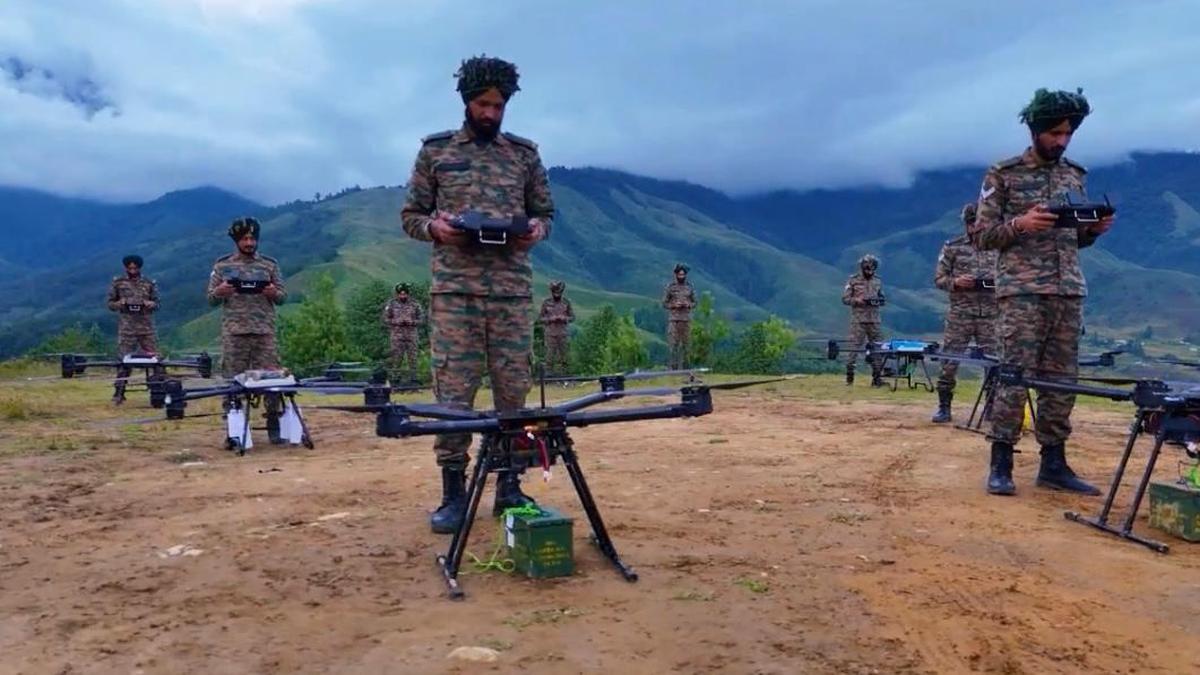
- 18 Sep 2025
In News:
The Indian Army's Exercise SiyomPrahar, represents a significant step in modernizing the Army’s operational capabilities. This field training exercise focused on validating the integration of unmanned aerial systems (UAS) into tactical operations, with a strong emphasis on surveillance, reconnaissance, target acquisition, and precision strikes. Below are the key highlights and insights from the exercise:
Key Objectives:
- Integration of Drone Technology: The core goal was to test how drone systems can be employed for persistent surveillance, battlefield reconnaissance, and precision strikes, thus enhancing overall combat effectiveness.
- Development of New TTPs (Tactics, Techniques, and Procedures): A key focus was on refining how drone-derived intelligence could be fused with conventional firepower, ensuring rapid decision-making in dynamic and evolving combat scenarios.
- Joint Targeting and Decision-making: The exercise aimed at refining joint targeting processes, highlighting the importance of real-time intelligence to improve targeting accuracy and decision-making speed in the heat of battle.
Key Features of the Exercise:
- Realistic Battlefield Conditions: The exercise was conducted under simulated real-world combat conditions, providing a comprehensive test of UAS capabilities in diverse operational environments.
- Synergy Between Traditional Combat and Emerging Technologies:Exercise SiyomPrahar underscored the importance of blending traditional combat arms with cutting-edge technologies, such as drones, to create a more adaptive and efficient military force.
- Operational Preparedness: The exercise was a significant step toward enhancing the Indian Army’s operational preparedness for future combat scenarios, integrating modern technology to ensure readiness for future battlefields.
Strategic Importance and Key Insights:
- Adaptability and Synergy: The exercise highlighted how the Army is integrating modern warfare tactics with traditional methods to create a more effective, adaptable force that can operate in dynamic and complex environments.
- Real-Time Data Utilization: By using drones to gather real-time intelligence, the Indian Army is significantly improving targeting accuracy, enabling faster, more informed decisions in combat situations.
- Reduced Soldier Risk: The deployment of drones for reconnaissance and strikes minimizes the exposure of ground troops to potential dangers, enhancing both tactical effectiveness and safety on the battlefield.
- Joint Operational Capabilities: Exercise SiyomPrahar demonstrated how drones can be integrated into joint operational structures, improving communication and coordination between various arms of the military.
Broader Implications for Future Warfare:
- Technological Innovation in Combat: The successful integration of drone technology in this exercise indicates a shift towards technology-driven warfare, where drones play a critical role in intelligence gathering, battlefield awareness, and precision targeting.
- India’s Commitment to Modernization: The exercise is a testament to India’s proactive approach to adapting to the changing nature of warfare, ensuring that its forces remain future-ready and capable of responding effectively to emerging security challenges.
Brown Trout

- 17 Sep 2025
In News:
- Kashmir is embarking on a significant initiative to revive its brown trout (Salmo trutta) population, a species first introduced to the Valley by the British in 1900.
- Once a hallmark of Kashmir’s cold-water streams and a popular game fish, the brown trout population had declined over decades due to unregulated angling, habitat degradation, and ecological disturbances.
- The Fisheries Department of Jammu & Kashmir plans to reintroduce the species into streams and lakes, aiming to combine conservation with tourism promotion.
About Brown Trout
- The brown trout is a cold-water, salmonid fish native to Europe, northern Africa, and parts of Asia. It prefers cool, well-oxygenated freshwater streams, often residing in crevices between boulders. Typically, individuals grow 15–22 inches in length and weigh 1–5 pounds.
- Brown trout are renowned as a game fish due to their aggressive and elusive nature, which makes angling challenging and rewarding.
- Globally, brown trout have been introduced widely as a game fish, but outside their native range, they are considered one of the world’s worst invasive species.
- In India, their introduction to Kashmir was facilitated by Frank J Mitchel, a British entrepreneur, and earlier attempts during Maharaja Pratap Singh’s era. The fish initially thrived in streams such as Panzagam, Lidder, Bringhi, and Ferozpora, eventually supporting recreational fishing and angling tourism.
Revival Initiative
The current revival project is supported under Pradhan Mantri Matsya Sampada Yojana (PMMSY) and J&K’s Holistic Agricultural Development Programme, enabling the import of 3 lakh pure brown trout eggs from Denmark. These were hatched at the Tchansar Hatchery in Kulgam, marking a milestone as previous efforts primarily focused on rainbow trout for food production rather than wild trout restoration.
Rearing brown trout posed unique challenges:
- They refuse artificial feed, requiring specially formulated diets of crustaceans mixed with cod liver oil.
- They feed in darkness, prompting hatchery modifications to simulate natural conditions and monitor feeding.
The October–November period, coinciding with their breeding season, was chosen for release as brown trout exhibit lower aggression and reduced cannibalism, increasing survival rates. Streams and lakes targeted for reintroduction include Veshav River and Kounsarnag Lake in Kulgam.
Ecological and Socioeconomic Significance
Reintroduction serves multiple purposes:
- Biodiversity restoration: Revives native aquatic fauna and strengthens freshwater ecosystems.
- Tourism enhancement: Brown trout are a draw for anglers, boosting local tourism and allied services.
- Heritage and culture: The initiative reconnects the Valley with a century-old ecological and recreational tradition.
Experts, however, caution that habitat preservation is crucial, emphasizing the need to control illegal riverbed mining and maintain clean, oxygen-rich streams for the trout’s survival.
Conservation Status and Global Context
According to the IUCN Red List, the brown trout is listed as Least Concern, reflecting its wide distribution and adaptability in native ranges. However, localized conservation efforts, such as this reintroduction in Kashmir, are essential to sustain ecologically and economically significant populations in specific regions.
Amrit Sarovar Mission
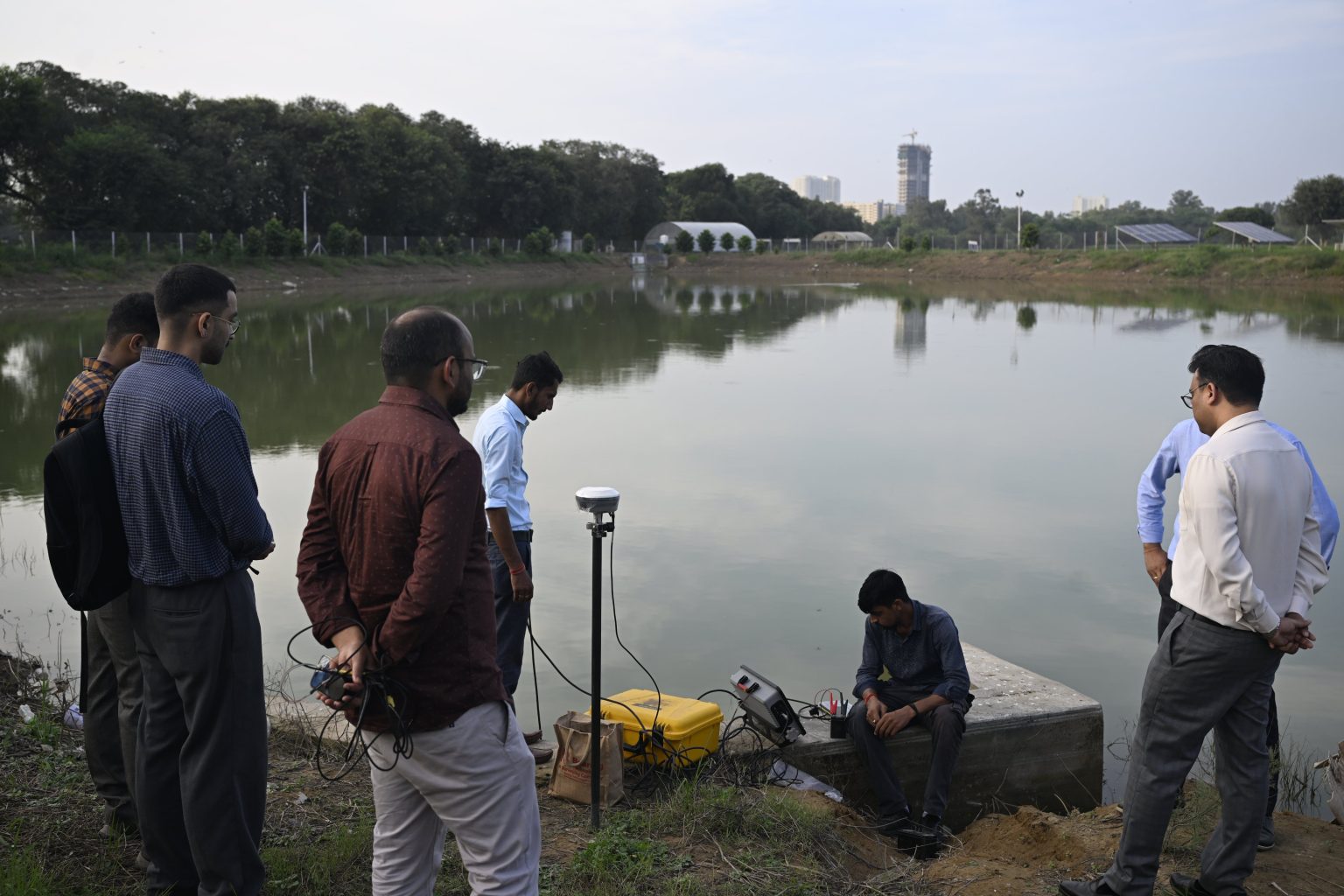
- 17 Sep 2025
In News:
- The Amrit Sarovar Mission, launched by Prime Minister Narendra Modi in April 2022, is a flagship initiative aimed at addressing water scarcity and promoting sustainable rural development across India.
- The mission seeks to construct or rejuvenate 75 Amrit Sarovars (ponds) in each district, as part of the celebrations of Azadi ka Amrit Mahotsav.
- As of 2025, the government has reported the creation of over 68,000 Amrit Sarovars nationwide, marking a significant milestone in water conservation and community engagement.
Objectives and Significance
The mission’s primary objectives include:
- Water conservation and management in rural areas.
- Enhancement of local livelihoods through irrigation, fisheries, duckery, cultivation of water chestnut, and water-based tourism.
- Promotion of social cohesion by establishing Amrit Sarovars as community gathering points.
- Integration of government initiatives through a “Whole of Government” approach, ensuring convergence of resources and expertise.
Each Amrit Sarovar is designed to have a minimum pondage area of one acre with a water-holding capacity of about 10,000 cubic metres. Surrounding vegetation typically includes trees such as Neem, Peepal, and Banyan, contributing to ecological sustainability and enhancing biodiversity.
Participatory and Institutional Framework
The site selection and supervision of Amrit Sarovars are conducted by Gram Sabhas, with Panchayat representatives overseeing the development. This participatory approach ensures that local communities have ownership and accountability for the maintenance and sustainable use of water resources.
The mission operates on convergence principles, utilizing funds and resources from multiple sources including:
- Mahatma Gandhi NREGS
- 15th Finance Commission Grants
- Pradhan Mantri Krishi Sinchai Yojana (PMKSY) sub-schemes, such as Watershed Development and Har Khet Ko Pani
- State government schemes
There is no separate financial allocation for the mission; rather, it leverages ongoing programs for maximum impact.
Technology and Monitoring
To ensure efficient implementation and progress tracking, the Bhaskaracharya National Institute for Space Applications and Geo-informatics (BISAG-N) has been engaged as a technical partner. The institute has developed the Amrit Sarovar Portal and Mobile App, which enables real-time monitoring, reporting, and evaluation of district-level activities.
Workshops and Capacity Building
The Ministry of Rural Development organized a national workshop in New Delhi to reinforce the mission’s technical foundations and promote community-driven sustainable practices. Officials from states and Union Territories discussed strategies to enhance technical capacity, innovation, and inter-departmental collaboration, paving the way for the next phase of the mission.
Impact and Prospects
The Amrit Sarovar Mission exemplifies integrated rural development, linking water security, ecological sustainability, and livelihood generation. By reviving traditional water bodies and creating new ponds, it contributes to groundwater recharge, climate resilience, and rural prosperity. The initiative also strengthens people’s participation in natural resource management, ensuring that water resources are used efficiently and sustainably.
As the mission progresses, it is expected to play a critical role in mitigating rural water crises, enhancing agricultural productivity, and fostering inclusive growth in India’s villages.
Erra Matti Dibbalu

- 17 Sep 2025
In News:
Andhra Pradesh has taken a major step towards global heritage recognition with the inclusion of Erra Matti Dibbalu (Red Sand Dunes) near Visakhapatnam and the Natural Heritage of Tirumala Hills in the UNESCO Tentative List of World Heritage Sites. The move reflects India’s growing commitment to protect and preserve sites of geological and ecological importance. Being placed on the Tentative List is a mandatory prerequisite for eventual nomination to the UNESCO World Heritage List, symbolizing international acknowledgment of a site’s Outstanding Universal Value (OUV).
Erra Matti Dibbalu: India’s Rare Coastal Geo-Heritage Site
- Located along the coast near Visakhapatnam, Erra Matti Dibbalu—literally “Red Sand Dunes”—is a unique National Geo-heritage Monument, spread over 1,500 acres.
- The formations consist of sand, silt, and clay, with their deep red hue arising from natural oxidation over thousands of years.
- These dunes exhibit badland topography with striking geomorphic features such as gullies, buried channels, paired terraces, beach ridges, wave-cut terraces, knick points, and waterfalls.
- The site represents the late Quaternary geologic age and provides vital evidence of climatic and sea-level fluctuations over millennia. Dendritic drainage patterns and layered sediments at the site act as a natural archive of environmental changes and coastal evolution.
- First recorded in 1886 by British geologist William King, the site is globally rare — with only two similar formations identified, one in Sri Lanka and another in Tamil Nadu (Teri Sands).
- Additionally, archaeological artefacts discovered here point to Upper Palaeolithic human activity (around 20,000 BCE), making it an important cultural and scientific site.
- Recognizing its geological and historical significance, the Geological Survey of India (GSI) declared Erra Matti Dibbalu a National Geo-heritage Monument in 2016. However, experts warn that unregulated tourism and filming activities pose a threat to its fragile ecosystem, calling for stronger conservation and monitoring mechanisms.
- According to IUCN’s Geological World Heritage (2021) classification, the site may qualify under Theme 2: Tectonic System and Theme 7: Coastal System.
Tirumala Hills: A Geological and Ecological Treasure
- The Tirumala Hills in Tirupati district are celebrated not just for spiritual significance but also for their geological, ecological, and cultural heritage.
- The hills showcase the Eparchaean Unconformity—a rare geological boundary where 2.5-billion-year-old Archean rocks meet younger Proterozoic formations of the Cuddapah Supergroup. This boundary represents a vast time gap in Earth’s geological record, offering critical insights into planetary evolution.
- The site also houses the famous Natural Arch (Silathoranam), a naturally sculpted rock formation estimated to be 1.5 billion years old. The region forms part of the Seshachalam Biosphere Reserve and Venkateswara National Park, both home to rich biodiversity including endangered red sanders (Pterocarpus santalinus), Cycas beddomei, and the elusive Jerdon’s Courser.
- With dense forests, seasonal waterfalls, and unique geological formations, Tirumala Hills qualify under multiple UNESCO criteria related to natural beauty, ecological diversity, and geological significance. As per IUCN (2021), the site aligns with Theme 1: History of Planet Earth and Evolution of Life.
AI-Based Weather Forecasting for Agriculture
- 17 Sep 2025
In News:
India has launched a pioneering initiative that marks a paradigm shift in agricultural planning and climate risk management. The Ministry of Agriculture and Farmers’ Welfare (MoAFW) has implemented the country’s first-of-its-kind AI-based weather forecasting program aimed at empowering farmers with timely and accurate monsoon information. This initiative has reached 3.8 crore farmers across 13 states, positioning India as a global leader in applying artificial intelligence to agriculture.
Transforming Weather Forecasting through AI
Traditionally, Indian farmers depend heavily on the monsoon for Kharif cultivation — a critical determinant of rural livelihoods. Unpredictable rainfall patterns, intensified by climate change, have often disrupted sowing and crop management decisions. To address this, MoAFW harnessed artificial intelligence (AI) models to provide advance and localized monsoon forecasts, disseminated via SMS through the m-Kisan portal.
These AI-based monsoon forecasts were available up to four weeks earlier than usual, allowing farmers to make informed choices on what, when, and how much to plant. The initiative also ensured weekly forecast updates, especially during the 20-day pause in monsoon progression this year, helping farmers adjust operations accordingly.
AI Models and Technological Backbone
The forecasts were generated using a blend of two open-access AI models:
- Google’s Neural General Circulation Model (Neural GCM), and
- ECMWF’s Artificial Intelligence Forecasting System (AIFS) developed by the European Centre for Medium-Range Weather Forecasts.
Rigorous evaluation showed that these models outperformed traditional meteorological forecasts, particularly in predicting the onset and variability of monsoon rainfall at local levels. The initiative represents the first targeted dissemination of AI-based weather forecasts to farmers anywhere in the world.
m-Kisan Portal
The m-Kisan Portal serves as the digital backbone for this outreach. It enables government agencies and research institutions to deliver customized, location-specific, and language-tailored SMS advisories to farmers. Beyond weather forecasts, it also provides guidance on pest management, crop practices, and government schemes, thus strengthening the digital extension ecosystem in Indian agriculture.
Bairabi–Sairang Project
- 17 Sep 2025
In News:
The inauguration of Mizoram’s first-ever railway line — the Bairabi–Sairang Broad-Gauge Project — marks a historic milestone in the state’s connectivity and India’s Act East Policy. Prime Minister Narendra Modi inaugurated the 51.38-km line, constructed at a cost of ?8,070 crore, connecting Mizoram’s capital Aizawl to the national railway network for the first time.
A 15-Year Vision Realised
- Sanctioned in 2008–09 and launched for construction in 2015, the project exemplifies one of the most complex undertakings of the Indian Railways due to Mizoram’s mountainous terrain and fragile geology.
- Nearly 54% of the alignment passes through tunnels and bridges, making it a remarkable feat of engineering. The route comprises 45–48 tunnels, 142 bridges (including 55 major and 87 minor ones), and 10 road overpasses/underpasses.
- Among its iconic structures is Bridge No. 144 (or 196) near Sairang, which stands over 104–114 metres tall, surpassing the height of Delhi’s Qutub Minar and making it India’s tallest pier railway bridge.
- The project also introduced four new stations — Hortoki, Kawnpui, Mualkhang, and Sairang — linking remote communities and enhancing regional mobility.
Connecting Aizawl to the National Network
The line stretches from Bairabi on the Assam–Mizoram border to Sairang, located just 20 km from Aizawl, thereby integrating Mizoram’s capital into India’s railway map. With this, Aizawl becomes the fourth northeastern capital (after Guwahati, Agartala, and Itanagar) to gain direct rail connectivity, strengthening socio-economic linkages between the Northeast and the rest of India.
Boosting Regional Connectivity and Economic Growth
The newly inaugurated line will facilitate safe, efficient, and cost-effective transportation, reducing travel time and improving the movement of goods such as food grains, fertilizers, and essential commodities. It is also expected to stimulate tourism, horticulture, and local industries, generating employment and boosting livelihoods.
The Prime Minister also flagged off three new long-distance train services —
- Sairang–Delhi Rajdhani Express,
- Sairang–Guwahati Express, and
- Sairang–Kolkata Express —further enhancing the state’s integration with major urban centres.
Engineering Challenges and Innovations
Constructing railways across Mizoram’s steep ridges and fragile hills required advanced tunnelling techniques and innovative stabilization methods. Engineers had to solidify loose sand into rock formations before tunnelling. The passenger trains can now run at speeds up to 100 km/h, reflecting the project’s high safety and design standards.
Complementary Infrastructure Initiatives
Alongside the rail inauguration, infrastructure projects worth ?9,000 crore were launched under schemes like PM-DevINE and NESIDS, including:
- Aizawl Bypass Road (45 km),
- Thenzawl–Sialsuk Road, and
- Khankawn–Rongura Road, aimed at improving connectivity for farmers, traders, and industries.
Additionally, the Chhimtuipui Bridge under the Kaladan Multimodal Transit Project, an LPG bottling plant at Mualkhang, sports complexes, and Eklavya residential schools were announced to promote economic growth and human development.
Strategic and Policy Significance
The Bairabi–Sairang line is a critical component of India’s Act East Policy, designed to enhance connectivity and integration of the Northeast with Southeast Asia. It embodies India’s commitment to balanced regional development, national security, and border area empowerment.
By overcoming formidable terrain and logistical hurdles, the project stands as a testament to India’s infrastructural capabilities and its vision for an inclusive, connected, and self-reliant Northeast.
STAR Missile
- 16 Sep 2025
In News:
India has developed the Supersonic TARget (STAR) missile — an indigenous, reusable high-speed target system designed to reproduce modern cruise-missile and anti-ship threat profiles for realistic training and validation of sensors, weapons and doctrines. STAR replaces expensive imported target systems and fills a critical gap in live realistic training for the Navy, Air Force and Army.
What STAR does
STAR is not a combat weapon but a high-fidelity aggressor platform that simulates hostile supersonic missiles so air defence systems, shipborne weapons and interceptor pilots can practise time-critical engagements under realistic conditions. It can mimic sea-skimming runs, steep dives and evasive manoeuvres to test detection, tracking and interception chains end-to-end.
Key technical features
- Propulsion: Two-stage system — a solid booster for launch followed by a Liquid Fuel Ramjet (LFRJ) for sustained supersonic cruise. The ramjet experience is also being matured for future systems (e.g., Astra Mk-3 development).
- Speed: Mach 1.8–2.5 (roughly 612–850 m/s).
- Altitude & profiles: Operates from low sea-skimming heights (as low as ~12 feet above water) up to ~10 km, and can execute high-speed dives and complex manoeuvres.
- Range & flight time: Designed for missions between 55–175 km with flight durations of ~50–200 seconds, enabling diverse scenario replication.
- Variants:
- Air-launched STAR (carried by combat aircraft such as LCA Tejas) to emulate air-to-air or air-to-ground supersonic threats and anti-radar/anti-AWACS profiles.
- Ground-launched STAR (truck-mounted) for shore-based or remote launches without extensive infrastructure.
- Operational utility: High manoeuvrability, programmable trajectories and safe recovery/destruction options make it suitable for repeated use in trials.
Operational and strategic significance
- Realism in training: STAR provides time-critical, live target practice that simulations alone cannot offer — particularly valuable against low-altitude, high-speed cruise profiles which compress engagement timelines.
- Atmanirbhar Bharat: Fully indigenous development reduces dependency on foreign target systems, cuts recurring costs, and supports domestic missile-R&D ecosystems. STAR is reusable and cost-effective relative to imported alternatives.
- Force integration: Its modular design serves tri-service needs, helping calibrate ship radars, point-defence systems, interceptor missiles, and fighter tactics in joint exercises.
- R&D multiplier: The ramjet and guidance technologies validated on STAR feed into broader missile-development programs, strengthening long-term indigenous capabilities. Analysts also view STAR as a potential seed technology that could be adapted into tactical offensive roles in the future (e.g., anti-radar or precision suppression platforms), should doctrinal decisions and legal frameworks permit.
Development status and outlook
As of mid-2025, STAR progressed into advanced development and flight validation phases — integrating propulsion, guidance and control subsystems and conducting combat-style trials. Operational induction for routine service trials and training is anticipated as tests mature.
Cicadas
- 16 Sep 2025
In News:
The recent reappearance of cicadas in Kerala’s Silent Valley National Park — after decades of absence — has intrigued ecologists. It is being seen both as a possible indicator of ecosystem recovery and as a warning signal of ecological disruption caused by climate change and habitat alteration.
About Silent Valley
Located in the Nilgiri Hills of Kerala’s Western Ghats, Silent Valley National Park spans about 90 sq. km and represents one of India’s most pristine tropical rainforests. The forest’s name owes itself to the striking absence of cicada calls, which are ubiquitous in most tropical forests. The absence of these insects — known for their high-decibel songs — was noted as early as the 1840s by British botanist Robert Wight, making it an ecological enigma.
Understanding Cicadas
Cicadas are hemipteran insects recognized for their loud, species-specific acoustic signals. They spend most of their lives underground as nymphs, feeding on tree root sap, before emerging for a short adult phase primarily to mate.
- Habitat: Mostly canopy dwellers in natural forests with mature trees.
- Types:
- Annual cicadas – emerge every year in summer, often camouflaged among trees.
- Periodical cicadas – emerge collectively after 13 or 17 years of dormancy.
- Ecological Roles:
- Aerate soil and enhance nutrient cycling.
- Serve as prey for birds, reptiles, and mammals.
- After death, their bodies enrich soil nitrogen, aiding forest regeneration.
The Mystery of Silence
Unlike most tropical forests, Silent Valley lacked the characteristic cicada chorus. Scientists have proposed several hypotheses for this anomaly:
- Microclimate Conditions: The valley’s bowl-shaped topography, constant mist, and moisture-rich soils may hinder nymph development that prefers drier soil.
- Vegetation Composition: Unique tree species and leaf litter dynamics may not support cicada life cycles.
- Historical Climatic Shifts: Subtle long-term climate variations might have altered habitat suitability.
- Natural Absence Hypothesis: Cicadas may never have colonized this particular ecosystem in significant numbers.
Return of the Cicadas
Recent field surveys and local observations indicate a gradual resurgence of cicada populations in certain forest patches.
- Possible Causes:
- Shifts in vegetation structure and canopy composition.
- Rising temperatures and erratic rainfall patterns altering habitat conditions.
- Natural dispersal from adjoining forest landscapes.
Ecological and Conservation Implications
The reappearance of cicadas serves as a bioindicator — revealing subtle ecological shifts often invisible to human monitoring.
- It may represent resilience and natural regeneration following decades of conservation success since the 1984 ban on the Silent Valley hydroelectric project.
- Alternatively, it might indicate climate instability and biodiversity imbalance, as species distributions shift in response to anthropogenic pressures.
Silent Valley’s surrounding areas now face deforestation, plantation expansion, and tourism pressure, threatening its delicate ecological balance. Continuous long-term monitoring of insect diversity, vegetation, and microclimate is essential to interpret whether this trend marks recovery or disruption.
Revisiting the Right to Information (RTI) in the Age of Data Protection
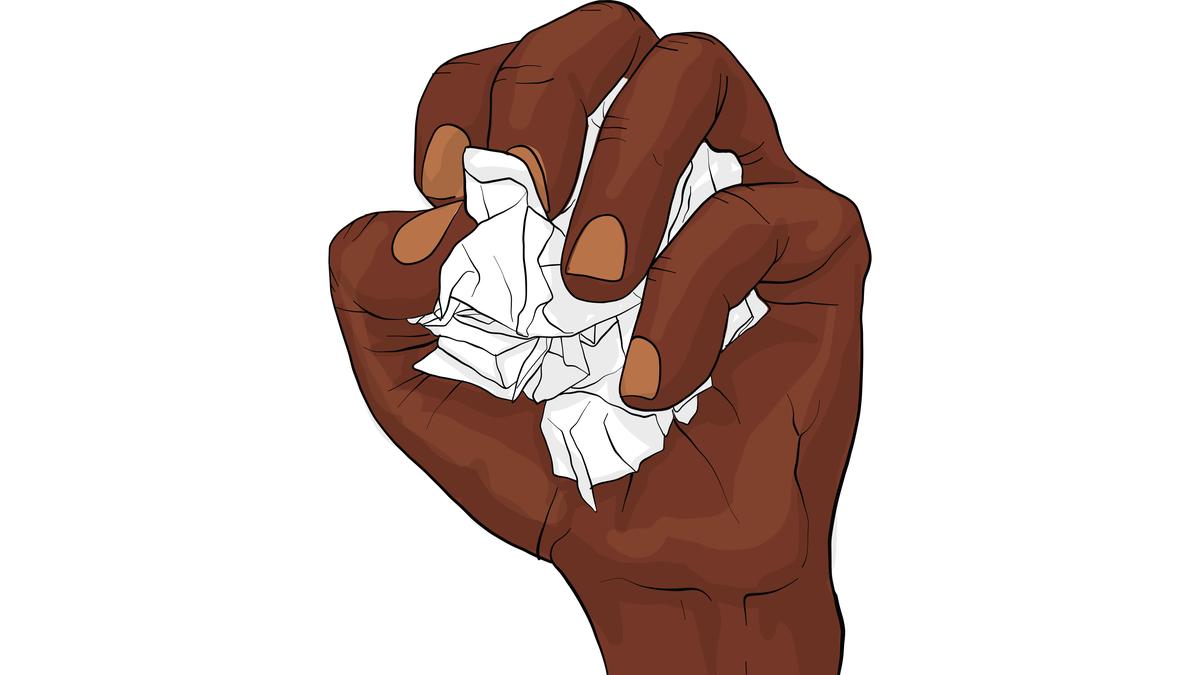
- 16 Sep 2025
In News:
The recent amendment to the Right to Information (RTI) Act, 2005 through the Digital Personal Data Protection (DPDP) Act, 2023 has sparked an intense debate on the balance between citizens’ right to information and the right to privacy. Critics argue that the change could transform India’s celebrated transparency law into a “Right to Deny Information”, undermining democratic accountability.
Evolution and Purpose of the RTI Act
- Enacted in 2005, the RTI Act is one of India’s most significant democratic reforms, aimed at promoting transparency, accountability, and citizen empowerment. It gives citizens the legal right to access information from public authorities, including government ministries, departments, and publicly funded organizations.
- Under the Act, public authorities are required to respond within 30 days to RTI requests. It also imposes penalties on officials who fail to provide information without valid reasons. Exemptions are limited to cases involving national security, confidential investigations, or information that could endanger individuals’ safety.
- The RTI rests on a foundational democratic principle — information held by the government belongs to the people. The state is merely a custodian of this information, accountable to citizens.
Amendment Through the DPDP Act, 2023
- Earlier, Section 8(1)(j) of the RTI Act permitted the disclosure of personal information if such disclosure served a larger public interest, such as exposing corruption or verifying implementation of welfare schemes.
- The DPDP Act, 2023 amended this clause, removing the public interest override and prohibiting disclosure of personal data altogether, even if it relates to public officials, unless legally mandated. This change effectively creates a blanket exemption for “personal information,” narrowing citizens’ access to critical public records.
Government’s Rationale
The Union government defends the amendment as an attempt to harmonize two fundamental rights —
- The Right to Privacy under Article 21, recognized by the Supreme Court in Justice K.S. Puttaswamy (2017), and
- The Right to Information under Article 19(1)(a).
According to the government, Section 8(2) of the RTI Act still allows disclosure if public interest outweighs privacy concerns, maintaining an “appropriate balance.” Officials argue that the amendment merely removes redundancy and ambiguity between the RTI and DPDP frameworks.
Criticisms and Concerns
However, legal experts, activists, and journalists warn that the amendment tilts the balance heavily toward secrecy, undermining the RTI’s original spirit.
- Dilution of Transparency:Without the “public interest” clause, authorities can refuse disclosure of crucial information, limiting citizens’ ability to scrutinize governance, corruption, or misuse of power.
- Broad Definition of ‘Personal Data’:The DPDP Act defines personal data expansively, enabling arbitrary denials of RTI requests, even for information concerning public servants’ official actions, assets, or decisions.
- Threat to Democratic Oversight:The amendment risks converting RTI from a tool of empowerment into a bureaucratic shield, curbing social audits and investigative journalism.
- Conflict with RTI’s Objective:The RTI was intended to shift power from public officials to citizens. Restricting access reverses this power dynamic, eroding democratic participation and accountability.
Judicial and Institutional Perspectives
- Justice K.S. Puttaswamy (Retd.) vs Union of India (2017):The Supreme Court upheld privacy as a fundamental right but emphasized it is not absolute and must be balanced with other rights, including transparency and public accountability.
- Supreme Court vs Subhash Chandra Agarwal (2019):The Court ruled that the office of the Chief Justice of India is subject to RTI and that judges’ asset declarations must be disclosed, reinforcing the primacy of public interest in promoting accountability.
- Justice A.P. Shah Committee on Privacy (2012):The expert group explicitly recommended that any privacy law should not dilute or override the RTI Act, asserting that transparency and privacy are complementary, not conflicting, principles.
Recommendations for Balance
- Narrow Definition of Personal Information:Limit exemptions only to information that genuinely compromises privacy, while allowing disclosure of public officials’ professional conduct, assets, and decisions.
- Training for Public Information Officers (PIOs):To ensure they interpret privacy clauses correctly and maintain the transparency-privacy balance.
- Strengthening Information Commissions:Empower Central and State Information Commissions with greater capacity and independence to adjudicate privacy-related disputes.
- Periodic Review:Establish a parliamentary oversight committee to review the impact of privacy laws on the RTI regime.
World’s First AI “Minister”

- 16 Sep 2025
In News:
In a historic first, Albania has appointed an AI-generated digital minister, named “Diella” (meaning ‘Sun’), to lead the country’s fight against corruption. The move, announced by Prime Minister Edi Rama, marks a pioneering experiment in AI-led governance, placing Albania at the forefront of the global debate on the use of artificial intelligence in public administration.
Background and Context
Albania has long struggled with systemic corruption, especially in public tenders, which have been at the centre of several high-profile scandals involving money laundering and organised crime. In response, the government has adopted an innovative approach — deploying AI to ensure transparency and accountability in governance.
Initially launched in January 2025, Diella began as an AI-powered virtual assistant helping citizens navigate e-Albania, the government’s online service portal. Dressed in traditional Albanian attire, the avatar symbolised the fusion of technology and national identity.
Following its successful trial, Diella has now been elevated to the rank of a “Digital Minister”, tasked with:
- Overseeing all public tenders, ensuring they are 100% corruption-free.
- Auditing tender decisions using data-driven algorithms for transparency.
- Recruiting global talent to strengthen Albania’s anti-corruption efforts.
- Promoting the digitisation of governance for efficiency and trust-building.
Ethical and Governance Concerns
While Diella’s appointment marks a milestone, it also highlights challenges associated with AI in governance:
- Bias and Discrimination: AI systems trained on flawed data may perpetuate societal biases.
- Accountability Gap: Ambiguity persists over who bears responsibility for AI-driven decisions — developers, operators, or governments.
- Data Privacy: Despite digital data laws, sensitive citizen information remains vulnerable.
- Job Displacement: Automation risks replacing administrative and clerical roles.
- Overdependence on Technology: Excessive reliance may undermine human judgment and empathy.
- Cybersecurity Threats: AI platforms are prone to hacking and data manipulation.
- Digital Colonization: Over-reliance on foreign AI technologies could erode national sovereignty.
India’s AI Governance Landscape
India has emerged as a global AI powerhouse through proactive policy initiatives:
- IndiaAI Mission (2024): ?10,300 crore initiative for AI research and common computing facilities (18,693 GPUs).
- BharatGen: First government-funded multimodal LLM (Large Language Model).
- Sarvam-1: Indigenous LLM supporting 10 major Indian languages (2 billion parameters).
- Hanooman’s Everest 1.0: Supports 35 Indian languages, expanding to 90.
- AI Centres of Excellence: Promoting innovation and AI startups nationwide.
- Digital Public Infrastructure (DPI): Integrates Aadhaar, UPI, DigiLocker, and AI solutions for efficient service delivery.
- e-Courts Phase III: Uses AI for smart case management and administrative reforms.
Nepal’s First Woman Prime Minister
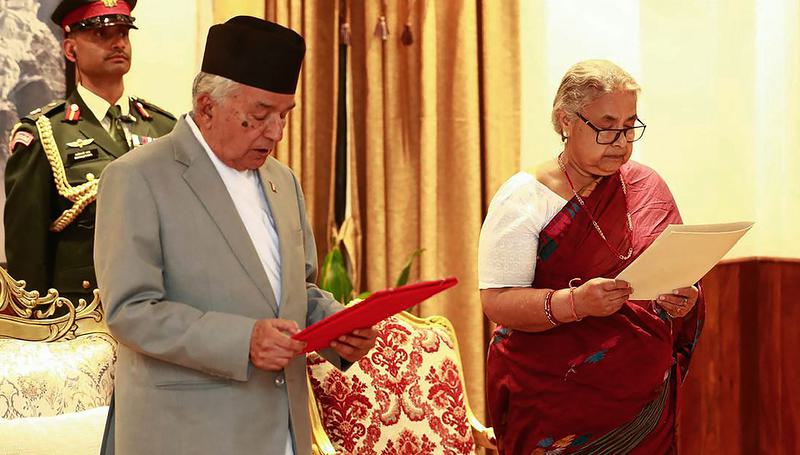
- 16 Sep 2025
In News:
Nepal has entered a crucial phase of political transition with the appointment of Sushila Karki, former Chief Justice and now the country’s first woman Prime Minister. President Ram Chandra Poudel administered the oath of office after dissolving Parliament and announcing fresh elections for March 5, 2026, marking a historic moment in Nepal’s democratic evolution.
Background: Political Turmoil and Gen Z-Led Movement
The decision came amid widespread Gen Z-led protests against former Prime Minister K.P. Sharma Oli, whose administration was accused of corruption, authoritarianism, and a social media ban that triggered nationwide unrest.
Facing pressure from the streets, the military, and constitutional experts, President Poudel dissolved the House and endorsed Karki’s appointment — a move described as a “remedial measure” during a political crisis. The protests, dominated by youth and digital activists, reflected a broader demand for accountability, transparency, and generational change in Nepal’s governance.
Sushila Karki: A Symbol of Integrity and Democratic Renewal
Aged 73, Sushila Karki is widely regarded as an upright and anti-corruption crusader. She holds a Master’s degree in Political Science from Banaras Hindu University and a Law degree from Tribhuvan University. As Nepal’s first female Chief Justice (2016–17), she was known for her fearless stance against corruption and political interference in the judiciary.
Her appointment as interim Prime Minister is supported by protesters, the Army, and civil society, who view her as a neutral and reformist leader capable of restoring trust in institutions. Her immediate mandate includes:
- Restoring law and order and maintaining peace amid political uncertainty.
- Investigating the September 8 violence and prosecuting those responsible for civilian deaths and attacks on state infrastructure.
- Overseeing the 2026 general elections and ensuring a peaceful, transparent transfer of power.
- Initiating constitutional reforms to strengthen democratic accountability.
Constitutional and Institutional Context
Although some questioned the legality of appointing a non-political figure as Prime Minister following Parliament’s dissolution, constitutional experts assert the decision falls within emergency democratic legitimacy, given the scale of the crisis. The Nepal Army played a stabilizing role throughout the unrest, mediating between the President’s Office and the protesters to ensure an orderly transition.
India–Nepal Relations: Context and Continuity
India welcomed Karki’s appointment, emphasizing stability, peace, and partnership under the ‘Neighbourhood First’ Policy. Nepal’s political stability is vital for India due to geostrategic, cultural, and economic interlinkages.
1. Geopolitical Significance:Nepal shares borders with five Indian states — Sikkim, West Bengal, Bihar, Uttar Pradesh, and Uttarakhand. Situated between India and China, it holds strategic importance in South Asian geopolitics.
2. Defence& Security Cooperation:India and Nepal share deep military ties, including the long-standing tradition of conferring honorary ranks on each other’s Army Chiefs. The Gorkha Regiment further symbolizes this enduring relationship based on mutual respect and trust.
3. Economic and Developmental Partnership:India remains Nepal’s largest trade and investment partner, accounting for over 64% of its trade and 33.5% of total FDI (USD 670 million). Bilateral trade stood at USD 8.85 billion in FY 2022–23, with India importing surplus electricity from Nepal.
India also provides 1,500+ scholarships annually under ITEC and other programs, supporting Nepal’s human resource development.
4. Cultural and People-to-People Ties:The countries share civilizational and religious linkages, exemplified by sites like Pashupatinath Temple (Kathmandu), Janakpur (birthplace of Sita), and Bodh Gaya (India). Over 8 million Nepalis live and work in India, deepening cross-border social integration.
India–Mauritius Relations
- 15 Sep 2025
In News:
- India and Mauritius share a unique relationship anchored in history, culture, and strategic convergence in the Indian Ocean Region (IOR). The visit of Mauritius Prime Minister Navinchandra Ramgoolam to Varanasi in 2025 marked a new milestone, with India announcing a USD 680 million Special Economic Package.
- The package seeks to strengthen bilateral cooperation in infrastructure, defence, maritime security, and cultural ties, while reinforcing India’s role as a key development and security partner in the region.
Key Features of the Special Economic Package (2025)
- Infrastructure Development: At least 10 projects, including completion of the new Air Traffic Control (ATC) tower at SSR International Airport, expansion of highways and ring roads, and the development of Motorway M4.
- Healthcare & Education: Establishment of new schools and hospitals.
- Maritime Cooperation: Redevelopment of Port Louis into a stronger maritime hub, and agreements on hydrography for joint surveys and navigation charts of Mauritius’ Exclusive Economic Zone (EEZ).
- Chagos Archipelago Engagement: In-principle agreement for joint surveillance of the Chagos Marine Protected Area, where the Diego Garcia base (operated by the US-UK) is located. India strongly backed Mauritius’ sovereignty claims, consistent with its support for decolonisation.
- Trade Facilitation: Bilateral trade in local currencies to be enabled, following the launch of UPI and RuPay cards in Mauritius.
- Security Partnership: India reaffirmed its role as Mauritius’ “first responder” and “net security provider” in the Indian Ocean, providing hydrographic support, refitting Mauritius Coast Guard ships, and training personnel.
Historical and Cultural Ties
- Migration: Indian migration to Mauritius began under French rule (1700s) and intensified during British rule post-1834, when nearly 500,000 indentured labourers arrived, most of whom settled permanently.
- Demographics: Today, about 70% of Mauritius’s population (1.2 million) is of Indian origin, strengthening cultural and familial bonds.
- National Day: Mauritius celebrates its National Day on March 12, coinciding with Mahatma Gandhi’s Dandi March, reflecting its deep-rooted civilizational connect with India.
Economic and Commercial Relations
- Trade: In FY 2022–23, bilateral trade stood at USD 554.19 million, with Indian exports at USD 462.69 million.
- FDI: Mauritius remains a significant investor in India—second-largest source of FDI (FY 2023–24) after Singapore.
- CECPA (2021): The Comprehensive Economic Cooperation and Partnership Agreement was India’s first trade agreement with an African country, expanding market access in goods, services, and investment.
- DTAA (1982): While the Double Taxation Avoidance Agreement facilitated investments, it also raised concerns of misuse for money laundering and round-tripping.
Defence and Security Cooperation
- India is Mauritius’ preferred defence partner, supplying platforms like Dornier aircraft and Advanced Light Helicopters (Dhruv), along with a USD 100 million Line of Credit for defence procurement.
- Joint patrolling, hydrographic surveys, and capacity building highlight the depth of security ties.
- The Agaléga Island Projects (airstrip and jetty, inaugurated in 2024) enhance maritime domain awareness and India’s strategic reach in the southwest Indian Ocean.
Strategic Significance of Mauritius for India
- Geopolitical Location: Mauritius, located 800 km east of Madagascar, is a crucial node for maritime security and trade in the Indian Ocean.
- Countering China: China’s growing influence, marked by its 2021 FTA with Mauritius under the Belt and Road Initiative (BRI), necessitates stronger India–Mauritius collaboration.
- Blue Economy: Mauritius’ EEZ expansion (post-treaty with the UK over Chagos) provides new opportunities in fisheries, offshore energy, and maritime resources, where India is a preferred partner.
- Regional Cooperation: Mauritius is active in the Indian Ocean Rim Association (IORA), aligning with India’s SAGAR vision—“Security and Growth for All in the Region”—and Vision MAHASAGAR.
Sarcoidosis
- 15 Sep 2025
In News:
- Sarcoidosis is a chronic inflammatory diseasecharacterised by the formation of granulomas—small clusters of immune cells—in multiple organs, most commonly the lungs and lymph nodes.
- The condition has a highly variable clinical course, ranging from asymptomatic or mild presentations to severe, life-threatening complications.
- Recent peer-reviewed studies, including those published in Nature Reviews Disease Primers,emphasise the importance of early diagnosis, timely intervention, and awareness of risk factors in improving patient outcomes.
Causes and Risk Factors
- The exact cause of sarcoidosis remains unknown, but evidence points towards a combination of genetic susceptibility, immune system overactivity, and environmental triggers.
- Possible stimuli include bacteria, viruses, dust, and chemical exposure. Certain gene variations may predispose individuals, with the immune system reacting abnormally, leading to chronic inflammation and granuloma formation.
Symptoms and Clinical Manifestations
Symptoms vary depending on organ involvement:
- Pulmonary (most common): persistent cough, shortness of breath, chest pain; advanced cases may progress to pulmonary fibrosis and respiratory failure.
- Skin: rashes, bumps, or nodules; tender sores (erythema nodosum).
- Eyes: redness, pain, blurred vision.
- Cardiac: irregular heartbeats, heart failure.
- Neurological: seizures, facial paralysis, or peripheral nerve damage.
Some patients remain asymptomatic, with the disease detected incidentally during routine examinations.
Diagnosis
Diagnosis requires a combination of clinical evaluation, imaging, and biopsy.
- Chest X-rays/CT scans often reveal characteristic granuloma patterns.
- Biopsy confirms non-caseating granulomas, distinguishing sarcoidosis from infections and malignancies.
- Blood tests and lung function tests help assess disease activity and organ damage.
Treatment Approaches
There is no definitive cure for sarcoidosis, but management depends on severity and organ involvement:
- Mild/asymptomatic cases: often require only observation and regular monitoring.
- Moderate to severe cases: treated with corticosteroids (e.g., prednisone) to suppress inflammation.
- Refractory cases: immunosuppressive agents (methotrexate, azathioprine) or biologic therapies targeting immune pathways.
Long-Term Outlook
The prognosis is highly variable:
- Many cases resolve spontaneously within a few years.
- Others may become chronic, causing permanent lung scarring, cardiac complications, or organ dysfunction.
- Early detection and continuous monitoring remain critical to preventing irreversible damage.
Public Health Relevance
Sarcoidosis highlights the complex interaction between genetics, immunity, and environment. Its unpredictable nature underlines the need for:
- Awareness campaigns for early recognition of symptoms.
- Strengthening diagnostic infrastructure in primary healthcare.
- Research on genetic predispositions and immunological mechanisms to develop targeted therapies.
Doctrine of Contributory Negligence

- 15 Sep 2025
In News:
The Andhra Pradesh High Court has recently clarified that the doctrine of contributory negligence cannot be invoked as a defence in criminal prosecutions. It held that a person driving rashly and negligently, causing death, will be held liable under Section 304A of the Indian Penal Code (IPC), even if the victim was partly negligent. This landmark ruling reinforces the distinction between civil liability for damages and criminal liability for offences.
Doctrine of Contributory Negligence: Concept
- Contributory negligence rests on the principle that every individual must exercise reasonable care for their own safety.
- If an injured party’s negligence contributes to the harm, they may be considered partly responsible.
- The doctrine stems from the legal maxim “Volenti non fit injuria” — one who consents to risk cannot later claim damages.
- Example: If a pedestrian crosses the road carelessly and is hit by a rash driver, the pedestrian’s conduct may reduce their claim for compensation in civil law.
Civil Law vs. Criminal Law Application
- Civil Law:
- Contributory negligence acts as a defence, reducing damages payable by the defendant.
- Indian courts often apply the principle of comparative negligence, apportioning liability based on the degree of fault of each party.
- Burden of proof lies on the defendant to show that the plaintiff’s negligence contributed to the harm.
- Criminal Law:
- The AP High Court clarified that contributory negligence is not a defence to criminal liability.
- Section 304A IPC punishes causing death by rash or negligent act, irrespective of victim’s conduct.
- Even if the victim was negligent, the accused cannot escape responsibility if their rashness directly caused the death.
Judicial Reasoning and Precedent
- Criminal liability is premised on breach of legal duty and societal responsibility, not merely individual claims of fairness.
- If contributory negligence were allowed as a defence in criminal law, it could dilute accountability and weaken deterrence against rash driving.
- By upholding strict liability under Section 304A IPC, the court reinforced that public safety outweighs individual contributory fault.
Indian Legal Position
- India does not have a codified statute on contributory negligence; instead, principles are derived from common law and judicial interpretation.
- In civil cases, courts exercise discretion to distribute damages fairly.
- In criminal prosecutions, however, the focus remains on the offender’s culpability, not the victim’s carelessness.
Significance of the Ruling
- Public Safety: Strengthens accountability for rash driving and negligent acts, a major cause of road fatalities in India.
- Doctrinal Clarity: Clearly separates the scope of contributory negligence in civil law from its inapplicability in criminal law.
- Victim-Centric Approach: Ensures justice is not denied to victims’ families on grounds of partial fault.
- Judicial Consistency: Aligns with the principle that criminal law serves deterrence and social protection, unlike civil law which primarily compensates.
Border Wing Home Guards

- 15 Sep 2025
In News:
The Union Ministry of Home Affairs (MHA) is contemplating the deployment of Border Wing Home Guards (BWHG) along the India–China border, on the lines of their existing role along the India–Pakistan border. This move reflects India’s evolving approach to border management, civilian participation in security, and augmentation of regular forces like the Indo-Tibetan Border Police (ITBP).
About Border Wing Home Guards (BWHG)
- Legal Framework: Home Guards are constituted under the Home Guards Act and Rules of States/Union Territories.
- Authorised States: Seven states have been authorised to maintain BWHGs — Meghalaya, Tripura, Assam, West Bengal, Punjab, Rajasthan, and Gujarat.
- Current Status: Presently, Rajasthan is the only state with active BWHGs.
- Tenure & Duties: Members are usually enlisted for 3–4 years, perform responsibilities similar to police constables, and receive training with 25% of costs borne by the Central Government.
Recruitment and Composition
- Open to individuals from all classes and walks of life, who volunteer their spare time for community and national service.
- Trained to act as a reserve force, capable of rapid mobilisation during border crises and emergencies.
Roles and Responsibilities
- Border Security:
- Act as ancillaries to the Army and ITBP.
- Assist in guarding vital installations, vulnerable areas, and border outposts, particularly during hostilities.
- Internal Security:
- Serve as an auxiliary to the police during law-and-order situations.
- Help in maintenance of essential services, disaster management, and crowd control.
- Community Support:
- Provide assistance during natural calamities such as earthquakes, floods, cyclones, and epidemics.
- Promote communal harmony and support protection of vulnerable sections of society.
- Operational Experience:
- Played a key role in information collection and dissemination during Operation Sindoor.
- Used effectively in intelligence support and area familiarisation along sensitive borders.
Strategic Relevance Along the China Border
- Force Multiplier: Deployment of BWHGs can supplement the ITBP and Army in surveillance, information gathering, and local liaison in border villages.
- Civil–Military Synergy: Encourages participation of local communities in security efforts, thereby improving intelligence flow and fostering trust.
- Cost-Effective Option: As they are part-time volunteers with limited tenure, they reduce the financial burden compared to raising additional paramilitary units.
- Border Management: Their presence may strengthen village defence networks in frontier areas, countering infiltration and enhancing preparedness.
INS Aravali

- 15 Sep 2025
In News:
The Indian Navy has recently commissioned INS Aravali, its latest naval base, at Gurugram, Haryana. Named after the ancient Aravali mountain range, the establishment is envisaged as a nerve centre for command, control, and Maritime Domain Awareness (MDA) operations, marking a significant stride in India’s maritime security architecture.
Strategic Importance
INS Aravali is designed to enhance the Navy’s information and communication infrastructure, which is central to modern maritime operations. Located in Gurugram—close to the national capital—it will support real-time decision-making, inter-agency coordination, and domain awareness across the vast Indian Ocean Region (IOR). This reflects India’s aspiration to position itself as the Preferred Security Partner in the IOR amidst evolving geopolitical challenges.
Motto and Vision
Guided by the motto “Maritime Security through Collaboration”, INS Aravali embodies a cooperative approach to maritime defence. It seeks synergy between naval information centres, maritime agencies, and allied stakeholders. The base also aligns with India’s broader strategic vision of MAHASAGAR (Mutual and Holistic Advancement for Security and Growth Across Regions), which underlines collaborative security and regional growth.
Symbolism and Identity
The crest of INS Aravali carries deep symbolism:
- A central mountain signifies the resilience and enduring strength of the Aravali Range.
- A rising sun reflects eternal vigilance, renewal, and the dawn of technological advancement in naval communications.
Together, they highlight the base’s mission to combine steadfastness with innovation in safeguarding India’s maritime interests.
Role in Maritime Domain Awareness (MDA)
MDA has become indispensable in an era of increasing threats, including piracy, illegal fishing, smuggling, cyber vulnerabilities, and grey-zone conflicts. INS Aravali’s role is to integrate satellite-based monitoring, coastal radar networks, information fusion, and real-time communication to ensure seamless surveillance of India’s maritime domain. It also supports the Navy’s partnerships with regional navies, reflecting the Indo-Pacific emphasis on collaborative security.
Broader Significance
- National Security: Enhances India’s capability to respond rapidly to maritime threats and secure sea lanes of communication, vital for trade and energy security.
- Regional Diplomacy: Strengthens India’s profile as a net security provider in the Indian Ocean, reinforcing strategic trust among neighbouring littoral states.
- Technological Edge: Demonstrates the Navy’s focus on modern information infrastructure and cyber-resilient systems to address multi-dimensional security challenges.
- Civil-Military Integration: Showcases participatory security governance by working with other agencies, reflecting a whole-of-government approach.
Non-communicable Diseases
- 14 Sep 2025
In News:
Non-Communicable Diseases (NCDs) such as cardiovascular disorders, diabetes, chronic respiratory ailments, and cancers have emerged as the leading cause of premature mortality globally. A recent Lancet study tracking progress across 185 countries (2010–2019) highlighted a worrying trend for India: unlike most nations where mortality risk from NCDs declined, India witnessed an increase in NCD-related deaths, especially among women.
Key Findings from the Lancet Study
- Rising Mortality Risk: Between 2010–2019, NCD mortality in India increased by 2.1% for females and 0.1% for males, compared to a decline in the previous decade.
- Probability of Death Before 80:
- Women – rose from 46.6% (2010) to 48.7% (2019).
- Men – remained high at 57.9% (2019), up from 57.8% (2010).
- Major Drivers: Ischaemic heart disease and diabetes (including kidney disease due to diabetes) contributed most to the rising risk, especially in women over 40 and men over 55.
- Improvements: Declines in deaths from liver cirrhosis, stroke, COPD, and stomach cancer were recorded, largely due to better blood pressure awareness and management.
Causes of the NCD Burden in India
- Lifestyle Factors
- Rapidly rising obesity, driven by unhealthy diets and sedentary lifestyles.
- Increased consumption of processed foods, sugary beverages, and trans fats.
- Tobacco and alcohol use.
- Environmental & Social Factors
- Urbanization, pollution (ambient and indoor), and chronic stress.
- Ageing population and poverty-driven dietary imbalances.
- Health System Gaps
- Limited access to quality primary care and preventive services.
- Low penetration of screening and early detection programmes in rural areas.
Expert Insights
- Diabetes–Obesity–Heart Disease Spiral: Experts warn that India’s growing obesity rates are fuelling diabetes, which in turn increases risks of cardiovascular complications.
- Policy Solutions Suggested:
- Aggressive taxation (up to 40%) on sugary drinks and ultra-processed foods.
- Subsidies for vegetables, fruits, and nutrient-rich foods.
- Urban planning reforms to create walking spaces and encourage physical activity.
- Public campaigns against tobacco, alcohol, excess salt, and stress.
- Tackling pollution as a compounding risk factor.
National Initiatives to Combat NCDs
- National Programme for Prevention and Control of NCDs (NP-NCD): Launched in 2010, expanded in 2023, focuses on early detection, management, and referral.
- 75/25 Initiative (2023): Targets 75 million people with hypertension and diabetes by 2025 through standardized care.
- Ayushman Bharat–PMJAY: Provides financial protection for tertiary NCD treatment and upgrades PHCs into Ayushman Arogya Mandirs.
- Eat Right India Movement (FSSAI): Promotes healthier diets and reduction of trans fats.
- Fit India Movement: Encourages regular physical activity and fitness to reduce lifestyle-related risks.
Way Forward
India’s NCD challenge demands a multi-pronged strategy:
- Strengthening primary healthcare for screening and early detection.
- Fiscal measures (taxes and subsidies) to influence dietary choices.
- Health education campaigns to promote lifestyle modifications.
- Integration of NCD management into universal health coverage.
- Climate and pollution control measures, given their direct links to respiratory and cardiac illnesses.
Five Years of Blue Revolution 2.0
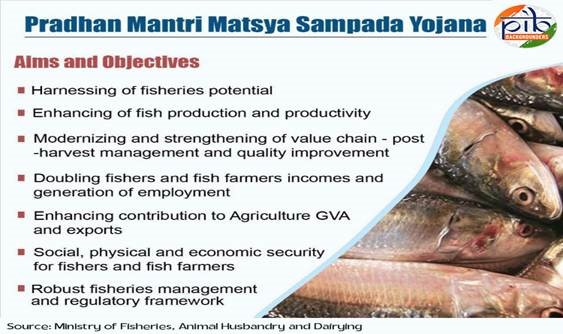
- 14 Sep 2025
In News:
India’s fisheries sector has been a key driver of food security, livelihoods, and exports. The Blue Revolution (2015) enhanced fish production and modernized infrastructure but left gaps in post-harvest management, market access, fisher welfare, and sustainability.
To bridge these, the government launched the Pradhan Mantri MatsyaSampada Yojana (PMMSY) in September 2020, with an investment of ?20,050 crore. It sought to make the sector ecologically sustainable, economically viable, and socially inclusive. The scheme has now been extended up to 2025–26.
Objectives
PMMSY aims to:
- Harness fisheries potential in a sustainable, equitable, and responsible manner.
- Enhance fish production, diversification, and efficient use of land and water.
- Strengthen value chains through modernized post-harvest infrastructure and quality improvements.
- Double incomes of fishers and generate large-scale employment.
- Enhance contribution to Agriculture GVA and exports.
- Provide social, physical, and economic security for fishers.
- Establish a robust fisheries management and regulatory framework.
The scheme functions through two components:
- Central Sector Scheme (CS): Fully funded by the Centre.
- Centrally Sponsored Scheme (CSS): Cost-sharing with states, further divided into beneficiary and non-beneficiary oriented activities.
Milestones and Achievements
In its first five years, PMMSY has significantly reshaped India’s fisheries sector:
- Production: Fish output rose from 141.64 lakh tonnes (2019–20) to a record 195 lakh tonnes in 2024–25, making India the second-largest fish producer globally (8% of world production).
- Exports: Grew from ?46,662 crore (2019–20) to ?60,524 crore (2023–24), strengthening India’s global seafood footprint.
- Livelihoods: Created nearly 58 lakh jobs and supported 99,018 women beneficiaries, with up to 60% subsidy support for women entrepreneurs.
- Technology adoption: Supported 52,058 reservoir cages, 22,057 RAS &Biofloc units, 1,525 sea cages, and raceways, making aquaculture more productive and climate-resilient.
- Post-harvest infrastructure: Approved projects worth over ?3,281 crore for 58 fishing harbours, 734 cold storages, 21 wholesale fish markets, 192 retail markets, 6,410 kiosks, and digital fish trade platforms.
- Community resilience: Declared 100 Climate Resilient Coastal Fishermen Villages and promoted sustainable technologies like Biofloc, which reduces water use and boosts productivity.
Supplementary Initiatives
- Pradhan Mantri MatsyaKisanSamridhiSah Yojana (PM-MKSSY): Launched in 2024 as a central sub-scheme with an outlay of ?6,000 crore (2023–27). Focuses on formalisation, aquaculture insurance, value chain efficiency, and quality assurance.
- National Fisheries Digital Platform (NFDP): Introduced in 2024 to digitise the sector, provide work-based digital identities, enhance credit access, ensure traceability, and integrate cooperatives. By September 2025, it had 2.7 million registrations.
Challenges
- Climate stress: Rising sea temperatures and extreme weather threaten coastal ecosystems.
- Infrastructure gaps: Cold storage and transport remain inadequate in remote areas.
- Overfishing: Risks depletion of marine resources.
- Limited reach: Many small-scale fishers lack awareness and access to formal schemes.
Scarborough Shoal Dispute
- 14 Sep 2025
In News:
The Scarborough Shoal, a triangular atoll in the South China Sea, has once again become a flashpoint after China announced the establishment of a 3,524-hectare nature reserve in the disputed waters. The move has drawn strong protests from the Philippines, which claims sovereignty over the feature and views China’s step as an assertion of jurisdiction under the guise of ecological protection.
Geographical and Strategic Significance
- The shoal is located about 220 km west of the Philippines’ Luzon Island and falls well within Manila’s 200-nautical mile Exclusive Economic Zone (EEZ) under the 1982 UN Convention on the Law of the Sea (UNCLOS).
- Claimed by both China (which calls it Huangyan Island) and the Philippines (locally known as Panatag Shoal or Bajo de Masinloc), sovereignty over the shoal remains unsettled.
- Its location near major global shipping lanes that carry over $3 trillion worth of trade annually enhances its geostrategic value.
- The lagoon and surrounding waters are rich in fish stocks, shellfish, and sea cucumbers, making it a vital fishing ground for regional communities.
Historical and Legal Context
- China’s claim: Traced back to maps from the Yuan Dynasty (1200s), Beijing argues historical sovereignty.
- Philippines’ claim: Based on proximity, falling within its EEZ, and backed by the 2016 Permanent Court of Arbitration (PCA) ruling under UNCLOS, which invalidated China’s “nine-dash line” claim. The ruling, however, did not adjudicate on sovereignty but recognized the shoal as a traditional fishing ground for multiple nations.
- Control: China seized effective control of the shoal in 2012 after a naval standoff and has since maintained coast guard and fishing militia presence, often intercepting Filipino vessels.
China’s Nature Reserve Plan
- China has approved a marine protected area to conserve the coral reef ecosystem of the shoal.
- Chinese officials argue it reflects improved “jurisdiction and governance” and claim Filipino fishermen are responsible for overfishing and pollution.
- Critics, however, view the reserve as a political instrument to strengthen Chinese control and potentially restrict access to Filipino fishermen under the pretext of conservation.
- The Philippines has accused China of coral destruction and giant clam harvesting, raising the possibility of fresh international arbitration on environmental grounds.
Regional and Global Reactions
- Philippines: Strongly protested the move, viewing it as a violation of its sovereign rights. President Ferdinand Marcos Jr. has leveraged the issue domestically while deepening ties with the United States.
- United States: Condemned the reserve plan as “destabilising and coercive.” Under the 1951 Mutual Defence Treaty, Washington has pledged to defend the Philippines against armed attacks, including those occurring “anywhere in the South China Sea.”
- Risk of escalation: Recent incidents—such as the use of water cannons, ramming of boats, and close aerial encounters—underline the danger of miscalculation, though both sides avoid direct combat to prevent escalation.
- Expert views: Chinese analysts frame the reserve as ecological protection, while Philippine experts argue it is a strategic tool to consolidate Beijing’s de facto control and marginalize other claimants.
Implications
- For the Philippines:
- Raises questions about maritime security and economic livelihood of fishermen.
- Strengthens its reliance on the U.S. alliance for deterrence.
- For China:
- Enhances its long-term maritime footprint and jurisdictional claims.
- Risks further international pushback, reinforcing perceptions of coercion.
- For International Order:
- Challenges the enforcement of UNCLOS and undermines multilateral dispute settlement mechanisms.
- Escalates tensions in one of the world’s busiest waterways with direct implications for global trade.
AdFalciVax
- 14 Sep 2025
In News:
- The Indian Council of Medical Research (ICMR) has recently licensed its indigenous multi-stage malaria vaccine, AdFalciVax, to five Indian pharmaceutical companies — Indian Immunologicals Limited, Techinvention Lifecare Private Limited, Panacea Biotec Limited, Biological E Limited, and Zydus Lifesciences.
- The technology transfer follows an Expression of Interest (EoI) process launched in July 2025, inviting eligible organisations to commercialise the vaccine.
About AdFalciVax
AdFalciVax is India’s first recombinant multi-stage malaria vaccine, developed by the Regional Medical Research Centre (RMRC), Bhubaneswar, under ICMR. It is specifically designed to tackle Plasmodium falciparum, the most lethal malaria parasite responsible for high morbidity and mortality across tropical regions.
Key Features
- Dual-purpose protection: Prevents Plasmodium falciparum infection in individuals and reduces community-level transmission.
- Pre-bloodstream targeting: Stops the parasite before it reaches the bloodstream, breaking the infection cycle.
- Novel technology: Uses Lactococcus lactis, a genetically engineered food-grade bacterial host, as its delivery system.
- Dual-antigen approach:
- PfCSP (Plasmodium falciparum circumsporozoite protein) – prevents initial infection.
- Pfs230 and Pfs48/45 fusion proteins – block parasite transmission from humans to mosquitoes.
- Validated research: Pre-clinical trials conducted in collaboration with ICMR–National Institute of Malaria Research (NIMR) and the National Institute of Immunology (NII), New Delhi, supported by the Department of Biotechnology.
Licensing and Technology Transfer
The licences are granted on a non-exclusive basis, enabling multiple companies to develop, manufacture, and commercialise the vaccine simultaneously. This model is expected to:
- Accelerate vaccine production and reduce costs.
- Ensure wide accessibility within India and potentially in malaria-endemic regions abroad.
- Strengthen India’s position in vaccine innovation and biotechnology.
Significance
- Public health impact: With malaria still a major global health challenge, AdFalciVax offers a potential breakthrough in reducing disease burden.
- Strategic milestone: Marks India’s entry into the development of advanced recombinant vaccines targeting multi-stage pathogens.
- Global relevance: Supports the World Health Organization’s (WHO) goal of reducing malaria cases and deaths by at least 90% by 2030 under the Global Technical Strategy for Malaria.
Biodiversity Heritage Site

- 14 Sep 2025
In News:
Bengaluru has recently witnessed the declaration of 8.6 acres of green cover at Cantonment Railway Colony as a Biodiversity Heritage Site (BHS)—the second in the city after the Gandhi Krishi Vigyan Kendra (GKVK). This decision marks a crucial step in safeguarding urban green spaces under increasing developmental pressures.
Citizen-led Conservation Movement
- The site was earlier earmarked for commercial development by the Rail Land Development Authority in collaboration with private real estate players. However, strong resistance emerged from citizens and environmental groups, particularly the ParisarakkagiNaavu organization. A large-scale campaign saw the participation of over 15,000 residents, of whom only two opposed the proposal, reflecting strong public consensus in favor of conservation.
- This site houses 371 trees across nearly 50 species, highlighting its ecological diversity. The move demonstrates how community activism and participatory governance can effectively influence environmental decision-making.
About Biodiversity Heritage Sites
Biodiversity Heritage Sites are unique ecosystems identified for their ecological, cultural, and evolutionary significance. They may encompass terrestrial, aquatic, coastal, or marine ecosystems. Key features include:
- High species richness (wild and domesticated), including endemic and threatened species.
- Presence of keystone species, wild ancestors of cultivated plants, or species of evolutionary importance.
- Historical or cultural relevance, such as fossil beds or sites linked with traditional practices.
The first BHS in India was the Nallur Tamarind Grove (2007, Karnataka), and since then, several others have been declared across states.
Legal Framework
The Biological Diversity Act, 2002 (Section 37) empowers state governments to notify areas of biodiversity importance as BHS, in consultation with local bodies. Key provisions include:
- State autonomy in management, conservation, and framing rehabilitation schemes for affected communities.
- Community participation, with no restrictions on prevailing traditional practices unless voluntarily adopted.
- Purpose: Enhancing quality of life and ensuring sustainable use of biodiversity resources.
Thus, the Cantonment Colony green cover’s recognition aligns with both ecological imperatives and community welfare.
Significance for Bengaluru and Urban India
- Urban ecological security: Protecting 8.6 acres of dense green cover helps counteract urban heat islands, air pollution, and biodiversity loss in one of India’s most rapidly expanding cities.
- Community stewardship: The initiative illustrates how local involvement strengthens environmental governance.
- Policy relevance: The case highlights the role of public consultation in environmental decision-making, setting a precedent for other urban centers facing similar challenges.
Perpetual Bonds
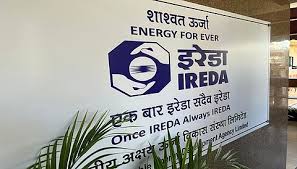
- 13 Sep 2025
In News:
- The Indian Renewable Energy Development Agency Ltd (IREDA) has successfully raised ?453 crore through its second issue of Perpetual Bonds at an annual coupon of 7.70%.
- The issue received bids worth ?1,343 crore against the base size of ?100 crore and a Green Shoe option of ?400 crore, resulting in an oversubscription of 2.69 times.
- This fund infusion will help IREDA strengthen its capital base and enhance its ability to finance green and renewable energy projects, in line with India’s clean energy transition goals.
What are Perpetual Bonds?
- Definition: A type of fixed-income security with no maturity date, paying interest indefinitely. They are also called “perps” or “consol bonds.”
- Redemption: Issuers are not obligated to repay the principal, though most bonds have a call option after 5–10 years, allowing issuers to redeem them if market conditions are favorable.
- Returns & Risk:
- Offer higher interest rates to compensate for indefinite tenure.
- Highly sensitive to interest rate fluctuations.
- In case of bankruptcy, bondholders are paid after secured creditors but before shareholders.
- Accounting Perspective: Often treated as equity-like instruments on balance sheets, making them attractive for strengthening capital structure without diluting ownership.
- Usage in India: Commonly issued by banks and financial institutions to meet capital requirements.
Significance of IREDA’s Move
- Capital Strengthening: Provides a stable, long-term source of funds without creating repayment obligations.
- Boost to Renewable Energy: Ensures greater financing availability for solar, wind, bioenergy, and emerging green technologies.
- Market Confidence: Oversubscription reflects investor trust in India’s renewable energy sector and in IREDA’s financial stability.
- Policy Alignment: Supports India’s commitment to achieve 500 GW of renewable capacity by 2030 and transition towards net-zero by 2070.
Isobutanol
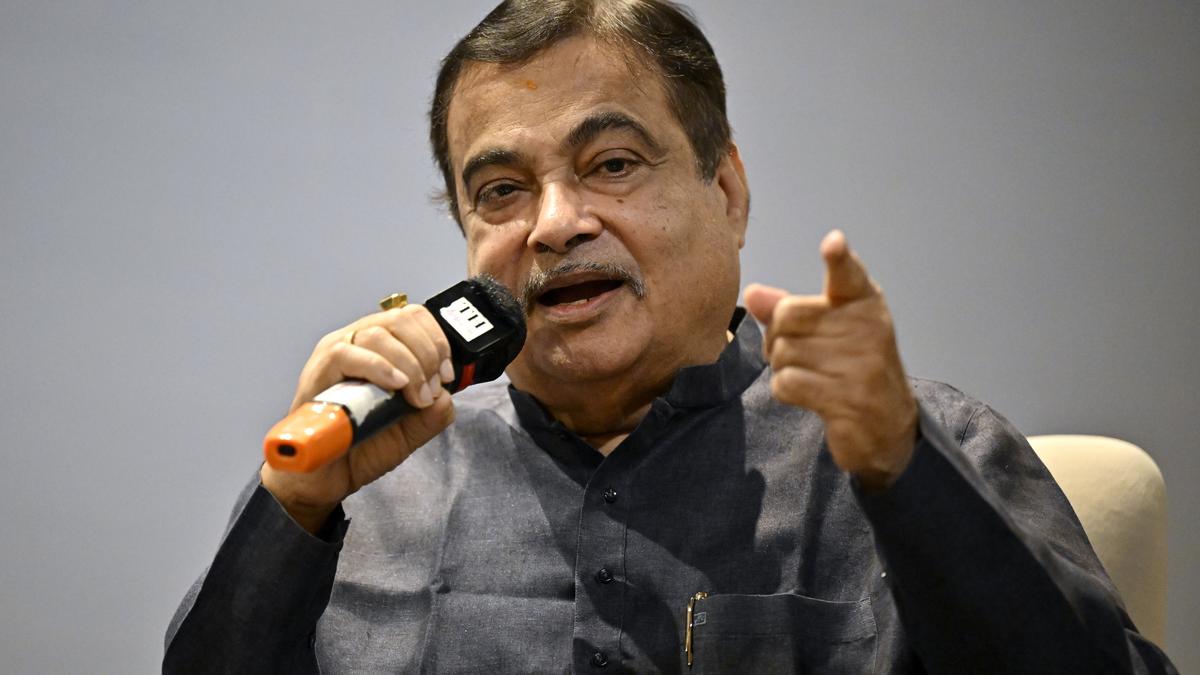
- 13 Sep 2025
In News:
- The Government of India is exploring the possibility of blending isobutanol with diesel, following the limited success of earlier attempts at blending ethanol with diesel.
- At the annual conclave of the India Sugar and Bio-Energy Manufacturers Association (ISMA), Union Minister for Road Transport and Highways, Nitin Gadkari, announced that the Automotive Research Association of India (ARAI) is conducting trials to test the feasibility of 10% isobutanol–diesel blends. Alongside blending, isobutanol is also being considered for standalone fuel applications.
- This development comes at a time when India has been pushing for higher ethanol blending with petrol (20%), but challenges remain in extending the same success to diesel, which accounts for the bulk of transport fuel consumption.
About Isobutanol
- Chemical Nature: An alcohol with the chemical formula C?H??O and one of the four isomers of butanol.
- Physical Properties:
- Clear, colorless liquid with a distinct odor.
- Moderately soluble in water.
- Highly flammable with a flash point just above room temperature.
- Vapors are heavier than air, making handling risky.
- Health Hazards: Prolonged exposure can cause skin irritation, eye damage (including vision loss), and respiratory issues.
Applications of Isobutanol
- Industrial Uses: Widely used as a solvent in paints, coatings, lacquers, flavor and fragrance industries, pharmaceuticals, and pesticides.
- Food Additive: Approved for limited use; also found naturally in some foods and alcoholic beverages.
- Biofuel Potential:
- Can be manufactured from plant-based sources using fermentation, often derived from ethanol.
- Higher energy density (heating value) compared to ethanol.
- Less corrosive and less hygroscopic than ethanol, enabling easier storage and transport in existing infrastructure.
- High octane rating, making it suitable for internal combustion engines.
- Unlike ethanol, it does not significantly distort vapor pressure when blended with gasoline.
Significance for India
- Energy Security: Diversifying biofuel options can reduce reliance on crude oil imports.
- Environmental Benefits: Biofuel adoption helps lower greenhouse gas emissions.
- Industrial Opportunities: Opens new avenues for sugar and bio-energy industries, which are central to India’s ethanol economy.
- Policy Alignment: Supports the government’s push towards alternative fuels and cleaner mobility under initiatives like the National Bio-Energy Mission.
Fast Track Immigration-Trusted TravellerProgramme

- 13 Sep 2025
In News:
- The Union Home Minister recently launched the Fast Track Immigration – Trusted TravellerProgramme (FTI-TTP) at five additional airports — Lucknow, Thiruvananthapuram, Tiruchirappalli, Kozhikode, and Amritsar — further expanding its coverage across the country.
- The initiative aims to provide seamless, secure, and faster immigration clearance for Indian citizens and Overseas Citizen of India (OCI) cardholders.
Background and Coverage
- Launch: First introduced at Delhi’s Indira Gandhi International (IGI) Airport in 2024.
- Latest Expansion: Now operational at 13 airports nationwide.
- Nodal Agency: Implemented by the Bureau of Immigration (BoI) under the Ministry of Home Affairs (MHA).
Objectives
- To reduce waiting time at immigration counters.
- To enhance international mobility of Indian citizens and OCI cardholders.
- To ensure convenient yet secure border management using digital technology.
Enrollment and Process
- Online Registration: Applicants must apply via the official portal https://ftittp.mha.gov.in, providing personal details and uploading documents.
- Biometric Capture: Collected either at Foreigners Regional Registration Offices (FRROs) or at the airport.
- Immigration Process at e-Gates:
- Boarding pass scan to fetch flight details.
- Passport scan for identity verification.
- Biometric authentication (fingerprint/face scan).
- Automated clearance — the e-gate opens within 30 seconds, eliminating the need for manual checks.
- Validity: Enrollment remains valid until the passport expires or for five years, whichever is earlier, with provision for renewal.
Significance
- Cuts down long queues at airports, reducing clearance time to under 30 seconds.
- Aligns with India’s vision of Digital Governance and Smart Borders.
- Enhances traveller experience, particularly for frequent international flyers.
- Strengthens security protocols through biometric and digital verification.
National Forest Martyrs Day 2025
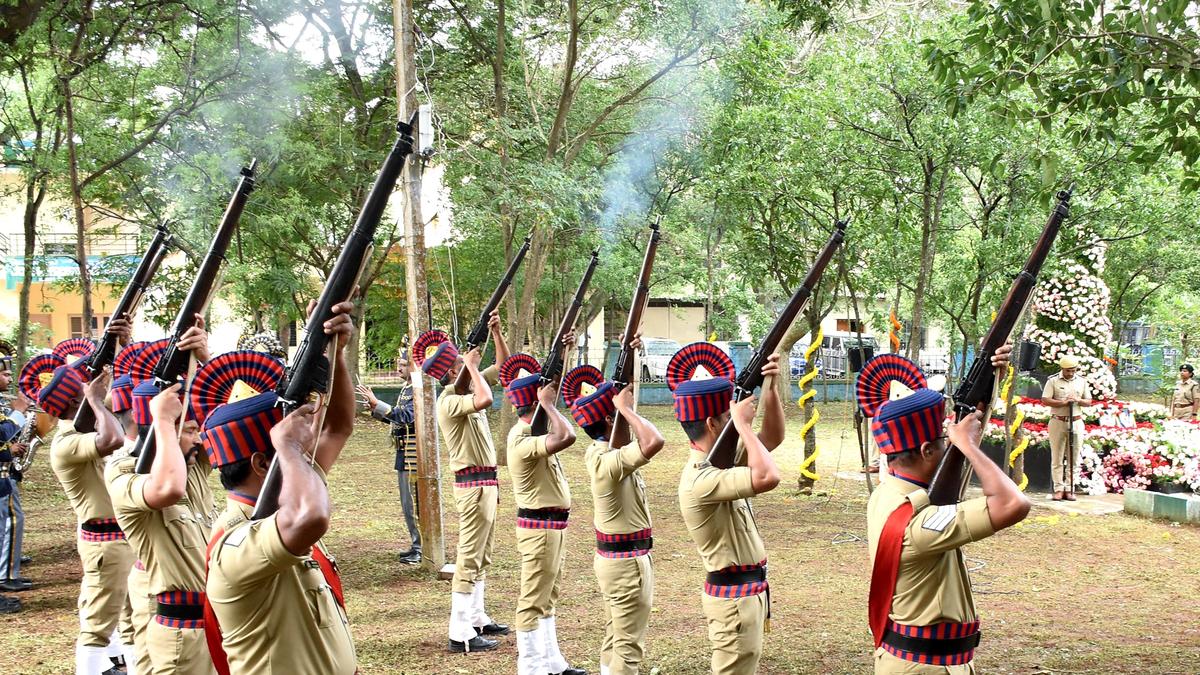
- 13 Sep 2025
In News:
- National Forest Martyrs Day is observed annually on September 11 to pay tribute to forest officials, personnel, and community members who have sacrificed their lives while protecting India’s forests and wildlife.
- The day recognizes the risks undertaken in the line of duty against threats like illegal logging, poaching, encroachment, and forest fires.
Historical Background
- The observance is rooted in the Khejarli Massacre of 1730 in present-day Rajasthan. When Maharaja Abhai Singh of Marwar ordered the felling of Khejri trees for palace construction, the Bishnoi community, led by Amrita Devi Bishnoi, resisted by embracing the trees. In the brutal crackdown, 363 villagers lost their lives to protect their sacred groves.
- This legacy later inspired environmental movements such as the Chipko Movement (1970s), reinforcing India’s tradition of community-led conservation. Recognizing this historic sacrifice, the Ministry of Environment, Forest and Climate Change (MoEFCC) officially declared September 11 as National Forest Martyrs Day in 2013.
Significance
- Commemoration of Sacrifice: The day honours not only the Bishnoi martyrs but also countless forest personnel who have died in the line of duty.
- Environmental Awareness: Highlights the critical role of forests in climate regulation, biodiversity conservation, and ecosystem services like air and water purification.
- Community Involvement: Encourages local communities to uphold traditions of eco-conscious living.
- Policy Emphasis: Reinforces the need for stronger laws and protection mechanisms for natural resources and frontline forest staff.
Observance
The day is marked through:
- Memorial ceremonies in forest departments.
- Tree plantation drives to promote ecological restoration.
- Awareness campaigns and educational programmes in schools and communities.
- Community participation to spread the message of sustainable living and conservation.
All India Debt and Investment Survey (AIDIS) and Situation Assessment Survey (SAS) of Agricultural Households (2026–27)
- 13 Sep 2025
In News:
- The National Statistics Office (NSO), under the Ministry of Statistics and Programme Implementation (MoSPI), is set to conduct two of its flagship household surveys — the All India Debt and Investment Survey (AIDIS) and the Situation Assessment Survey (SAS) of Agricultural Households — during July 2026 to June 2027.
- These surveys are part of the broader framework of the National Sample Survey (NSS), initiated in 1950, which provides critical data on consumption, employment, health, indebtedness, and welfare, forming the backbone of evidence-based policymaking in India.
All India Debt and Investment Survey (AIDIS)
- Origin and Evolution: Traces its roots to the All India Rural Credit Survey (1951-52), later expanded in 1961-62 to cover debt and investment. Since then, AIDIS has been conducted roughly once every decade, with the latest in the 77th Round (2019), at the request of the Reserve Bank of India (RBI).
- Coverage: Captures data on household indebtedness, savings, and asset ownership across rural and urban households.
- Significance:
- Inputs for national accounts and measurement of wealth distribution.
- Helps assess inequality in asset ownership and functioning of credit markets.
- Provides a crucial evidence base for the RBI, MoSPI, and financial policymakers.
Situation Assessment Survey (SAS) of Agricultural Households
- Launch and Expansion: Initiated in 2003 to examine the economic conditions of farmers, expanded in 2013 to cover all agricultural households, and further refined in the 2019 round.
- Scope of Coverage:
- Income and expenditure patterns of agricultural households.
- Indebtedness and credit access.
- Ownership of land and livestock.
- Crop and livestock production, farming practices, and adoption of technology.
- Access to government schemes, including crop insurance.
- Policy Relevance: Used extensively by the Ministry of Agriculture and Farmers Welfare, NITI Aayog, researchers, and financial institutions to frame policies for agriculture and rural development.
Technology Perspective and Capability Roadmap (TPCR) 2025
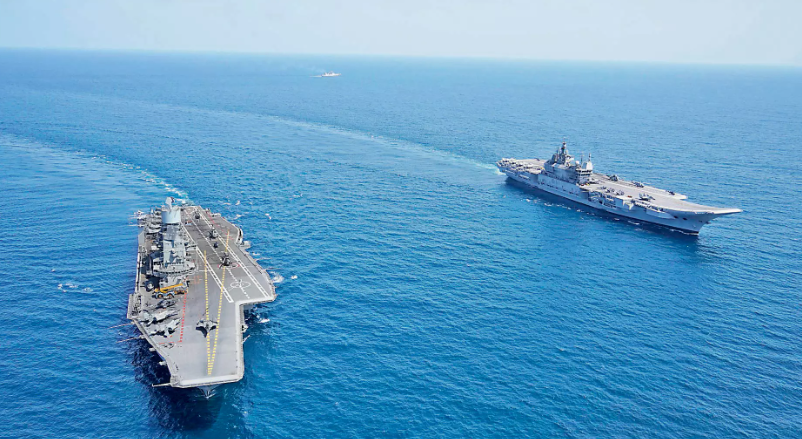
- 12 Sep 2025
In News:
- The Ministry of Defence (MoD) recently released the Technology Perspective and Capability Roadmap (TPCR) 2025, a strategic blueprint outlining India’s defence technology and capability requirements over the next 15 years.
- The roadmap aims to guide the Indian Army, Navy, and Air Force in modernisation while providing domestic industry, academia, and research institutions early visibility to align R&D and production with future procurement needs. Indigenisation and self-reliance form the core of TPCR 2025.
Objectives of TPCR 2025
- Early Visibility for Industry: Help domestic manufacturers and research organisations plan development and production of advanced defence systems.
- Indigenisation: Reduce dependence on imports and promote domestic defence manufacturing.
- Future-Ready Armed Forces: Equip the military to face multi-domain warfare challenges, including cyber, space, AI-enabled, and hybrid conflicts.
- Sustainability: Integration of green logistics and energy-efficient systems in defence operations.
Key Features by Service
Navy:
- Nuclear Propulsion: Plans to induct 10 nuclear propulsion systems for aircraft carriers and large surface combatants, providing virtually unlimited endurance at sea.
- Next-Generation Aircraft Carrier: Equipped with Electromagnetic Aircraft Launch System (EMALS) to launch heavy fighters, airborne early warning aircraft, and UAVs in all sea states. Digital twin simulations to enable predictive maintenance.
- Surface Combatants: Induction of 5–10 destroyers, 7 corvettes, 4 Landing Platform Docks (LPDs) (~29,000 tonnes each), and 100 Next Generation Fast Interceptor Craft for coastal security.
- Underwater Warfare: 20 high-endurance Autonomous Underwater Vehicles (AUVs) for long-range surveillance and mine countermeasures.
- Missiles & Weapons: Over 200 surface-to-surface missiles and universal launchers for multi-platform deployment.
Army:
- ArmouredModernisation: Replacement of ageing T-72 fleet with 1,800 Future Ready Combat Vehicles (FRCVs); 300–400 light tanks for high-altitude sectors.
- Anti-Tank and Precision Weapons: Procurement of 50,000 ATGMs with tandem HEAT warheads, along with 600,000 artillery rounds, emphasising precision-guided munitions.
- UAV & Robotic Systems: Deployment of 70 MALE/HALE UAVs, 800 integrated drone-loitering munitions systems, and 400 ultra-light missiles for UAVs; over 700 robotic counter-IED systems.
- Cyber & AI Warfare: AI-enabled detection, classification, and adaptive jammers creating 15 km electronic denial zones; deepfake detection tools for operational security.
Air Force:
- Directed-Energy Weapons: 10–15 Tactical High-Energy Laser (THEL) systems with ranges of 6–15 km; high-power microwave systems to neutralise incoming threats.
- Stealth and UAVs: 150 stealth bomber drones for deep-strike missions; 100+ remotely piloted aircraft for ISR and strike roles.
- Persistent Surveillance: 75 High-Altitude Pseudo-Satellites (HAPS) and 20 stratospheric airships for continuous ISR and communications over extended periods.
Tri-Services (Joint):
- Hypersonic Missiles: Induction of 500+ scramjet-propelled hypersonic missiles capable of Mach 5+ speeds for rapid strike across land, sea, and air.
- Universal Missile Launchers: Platforms for multiple missile types to ensure interoperability.
- Cyber-Space Preparedness: AI-as-a-service platforms for 4,000 users, quantum key distribution networks, satellite hardening, and post-quantum secure communications.
Cross-Cutting Technologies
- AI & ML: Smart, predictive warfare through digital twin simulations and autonomous systems.
- Hybrid Warfare Capability: Integration of unmanned systems, robotic tools, and precision-guided munitions.
- Green & Sustainable Defence: Energy-efficient platforms and logistics aligned with national sustainability goals.
Strategic Significance
TPCR 2025 positions India to:
- Achieve self-reliance in defence technologies.
- Maintain credible deterrence and modernisation across all domains.
- Address emerging threats in cyber, space, and multi-domain warfare environments.
- Strengthen domestic defence industrial base through early technology visibility.
India’s first port-based Green Hydrogen Pilot Project

- 12 Sep 2025
In News:
Union Minister for Ports, Shipping and Waterways, SarbanandaSonowal, inaugurated India’s first port-based Green Hydrogen Pilot Project at V.O. Chidambaranar (VOC) Port, Tuticorin, Tamil Nadu, marking a significant step in India’s clean energy transition and green shipping ambitions.
Key Features of the Project
- Capacity: 10 Nm³ per hour.
- Cost: ?3.87 crore.
- Uses: The green hydrogen produced will power streetlights and an EV charging station in the port colony.
- Significance: VOC Port becomes the first Indian port to generate green hydrogen, aligning with India’s vision of Viksit Bharat 2047 and clean energy leadership.
Associated Green Initiatives at VOC Port
- Green Methanol Bunkering and Refuelling Facility
- Capacity: 750 m³, at a cost of ?35.34 crore.
- Expected to make VOC Port a green bunkering hub in South India.
- Linked to the proposed Coastal Green Shipping Corridor (Kandla–Tuticorin).
- Renewable Energy and Infrastructure Projects
- 400 KW rooftop solar plant, raising total capacity to 1.04 MW (highest among Indian ports).
- Foundation for a 6 MW wind farm.
- ?24.5 crore link conveyor to improve coal handling efficiency.
- ?90 crore multi-cargo berth and 3.37 km four-lane road for port connectivity.
- Upcoming Tamil Nadu Maritime Heritage Museum to showcase maritime history.
Strategic Importance
- Port Modernisation: Chennai, Kamarajar, and VOC ports have seen rapid expansion under the SagarmalaProgramme.
- 98 projects worth ?93,715 crore initiated in Tamil Nadu’s ports in the past 11 years.
- 50 projects completed; ?16,000 crore invested in modernisation and capacity building.
- Economic Impact:
- Expected to generate thousands of jobs.
- Attract global investments in green shipping and clean fuels.
- Strengthen India’s ambition of becoming a top 10 shipbuilding nation by 2030 and top 5 by 2047.
About V.O. Chidambaranar (VOC) Port
- Location: Tuticorin, Tamil Nadu, on the Coromandel Coast.
- Status: One of India’s 13 major ports, serving as a key maritime hub for South India.
- History: Formerly Tuticorin Port, renamed in 2011 after freedom fighter V.O. Chidambaranar (KappalottiyaTamizhan).
- Role: Major centre for coal handling, container trade, and now emerging as a green energy hub.
Angikaar 2025 Campaign
- 12 Sep 2025
In News:
The Ministry of Housing and Urban Affairs (MoHUA) has launched Angikaar 2025, a nationwide outreach campaign under the Pradhan Mantri Awas Yojana – Urban 2.0 (PMAY-U 2.0). The initiative seeks to bridge last-mile implementation gaps, accelerate housing delivery, and ensure that welfare benefits reach vulnerable urban families.
Objectives of Angikaar 2025
- Awareness Generation: Create widespread awareness of PMAY-U 2.0 across urban India.
- Housing Delivery: Fast-track verification of applications and completion of sanctioned houses.
- Beneficiary Support: Facilitate access to financial assistance, credit-linked support, and convergence with other welfare schemes.
- Inclusion: Prioritise housing needs of Special Focus Groups identified under PMAY-U 2.0.
Key Features
- Coverage: Over 5,000 Urban Local Bodies (ULBs) across India.
- Activities: Door-to-door campaigns, awareness drives, loan melas, cultural events, and anchor events under PM Awas Mela – Shehri.
- Convergence: Linkage with schemes such as the Credit Risk Guarantee Fund Trust for Low Income Housing (CRGFTLIH) and PM Surya Ghar: Muft Bijli Yojana.
PMAY-U Progress So Far
- Sanctioned Houses: 120 lakh.
- Completed & Delivered: 94.11 lakh pucca houses.
- Pending: Angikaar 2025 will focus on expediting completion of remaining sanctioned houses.
- Future Target under PMAY-U 2.0: Provide financial support (up to ?2.5 lakh per family) to an additional one crore urban families for constructing or purchasing pucca houses.
Significance
- Last-Mile Outreach: Brings government schemes closer to beneficiaries through direct engagement.
- Community Mobilisation: Promotes Jan Bhagidari (people’s participation) via awareness camps and cultural events.
- Holistic Development: Integrates housing with access to electricity, financial inclusion, and basic services.
- Housing for All: Reaffirms the government’s commitment to inclusive and sustainable urban development.
Vulture Network Portal

- 12 Sep 2025
In News:
- Vultures, once abundant across India, have faced catastrophic population declines over the past three decades due to carcass poisoning, harmful veterinary drugs (notably diclofenac), and negative social perceptions.
- Recognizing the urgency of conservation, an Assam-based foundation has launched India’s first dedicated vulture conservation portal to create a knowledge-sharing and awareness-driven network for their protection.
The Vulture Network Portal
- Nature: A cloud-based, first-of-its-kind portal in India dedicated to vulture conservation.
- Developer: We Foundation India, in collaboration with partners like the Assam Bird Monitoring Network and other organizations.
- Functions:
- Compiles scientific information on vultures.
- Provides freely downloadable outreach materials for awareness campaigns.
- Disseminates conservation material in local languages (beginning with Assamese) to ensure community participation.
- Focuses on addressing key threats to vultures, including:
- Carcass poisoning.
- Harmful veterinary drugs such as diclofenac.
- Myths and negative social perceptions around scavenger birds.
Significance
- Community Engagement: Builds a network of individuals and organizations working for vulture conservation.
- Policy & Awareness: Offers a centralized platform to support awareness drives, education, and grassroots campaigns.
- Localized Impact: By promoting information in regional languages, it enhances outreach among rural communities, where interaction with vultures is most direct.
Vultures of India
India hosts several species of vultures, many of which are critically endangered:
- Slender-billed vulture – ~800 mature individuals left.
- White-rumped vulture.
- Red-headed vulture.
- Himalayan griffon.
- Indian vulture.
- Cinereous vulture.
- Eurasian griffon.
- Egyptian vulture.
- Bearded vulture.
Conservation Context
- India has already banned the veterinary use of diclofenac (a major cause of vulture deaths) and promoted safer alternatives like meloxicam.
- Initiatives such as Vulture Safe Zones, breeding centres, and now this digital portal strengthen the country’s commitment to vulture conservation.
- As vultures play a critical ecological role as scavengers, their survival is linked to disease control and overall ecosystem health.
P-47 Protein
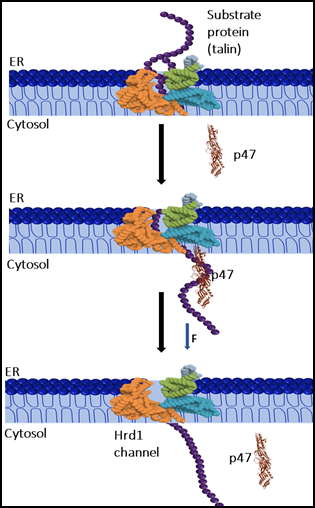
- 12 Sep 2025
In News:
Proteins within living cells constantly face mechanical stress during processes such as intracellular transport, cytoskeletal remodeling, and degradation. These stresses can compromise protein folding and stability, leading to cellular dysfunction.
Traditionally, specialized proteins called canonical chaperones were considered the primary agents guiding protein folding and stability. However, recent research has uncovered a surprising player in this landscape—p47, a cofactor protein with previously underestimated roles.
Discovery by SNBNCBS
A study conducted by the S. N. Bose National Centre for Basic Sciences (SNBNCBS), an autonomous institute under the Department of Science & Technology (DST), revealed that p47 functions as a “mechanical chaperone.” Using single-molecule magnetic tweezers, researchers applied controlled mechanical forces to mimic stresses faced by proteins inside cells.
The experiments demonstrated that:
- p47 stabilizes mechanically stretched proteins, enabling them to refold even under constant pulling forces.
- It enhances the mechanical efficiency of protein extraction from the endoplasmic reticulum (ER) lumen to the cytoplasm.
- It facilitates polypeptide translocation through narrow pores, reducing misfolding risks and improving protein quality control.
About p47 Protein
- Nature: A cofactor protein traditionally associated with the p97 complex, a major cellular machine responsible for protein trafficking, degradation, and membrane fusion.
- Revised Role: Beyond being a passive assistant, p47 exhibits autonomous, force-dependent protective activity, extending the functional repertoire of accessory proteins.
Significance of the Findings
- Scientific Breakthrough
- This is the first direct, single-molecule evidence that cofactors can act as mechanical chaperones.
- It challenges the existing view of accessory proteins as mere helpers and redefines their role in protein mechanics.
- Therapeutic Potential
- Targeting p47 or similar cofactors may provide new treatment avenues for diseases where protein stability under stress is compromised, such as:
- Cardiomyopathies (heart muscle diseases).
- Laminopathies (genetic disorders linked to nuclear protein instability).
- This could lead to precision medicine strategies focusing on mechanical resilience of proteins.
- Targeting p47 or similar cofactors may provide new treatment avenues for diseases where protein stability under stress is compromised, such as:
- Broader Implications
- Enhances understanding of cellular stress response mechanisms.
- Opens possibilities for drug development aimed at modulating protein folding under force.
- Strengthens India’s contributions to cutting-edge biophysical research with global relevance.
Health AI Global Regulatory Network (GRN)
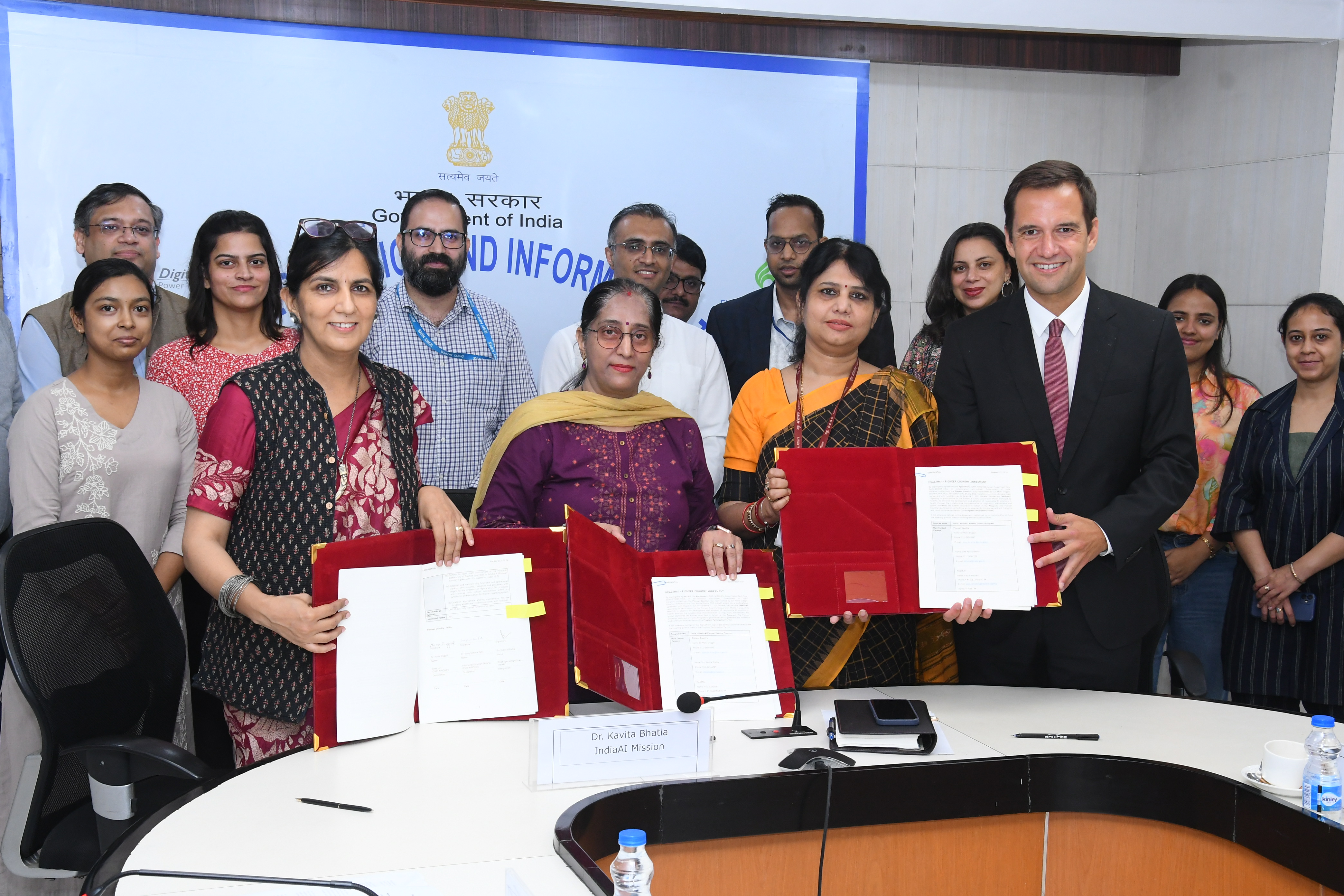
- 11 Sep 2025
In News:
India has joined the HealthAI Global Regulatory Network (GRN), becoming one of the pioneer countries shaping global norms for the responsible use of Artificial Intelligence (AI) in healthcare. This move reinforces India’s leadership in digital health innovation and aligns with its broader strategy to promote safe, equitable, and effective AI applications.
About the HealthAI Global Regulatory Network (GRN)
- Nature: An international, Geneva-based non-profit consortium of health regulators.
- Objective: To ensure fair, secure, and efficient deployment of AI in healthcare by building trust, strengthening oversight, and promoting shared learning.
- Functions:
- Develop joint safety standards and early warning systems for emerging risks.
- Facilitate cross-country collaboration and technical support.
- Maintain a global directory of registered AI health tools for transparency.
- Membership: Initial “pioneer countries” from diverse regions, including the UK, Singapore, and now India.
India’s Role in the Network
India’s participation is led by:
- Indian Council of Medical Research – National Institute for Research in Digital Health and Data Science (ICMR-NIRDHDS): A key institute driving digital health research under ICMR.
- IndiaAI: The Government of India’s central initiative under MeitY (via Digital India Corporation), aimed at building a comprehensive AI ecosystem.
Together, they will:
- Share safety protocols and best practices.
- Monitor AI performance in clinical settings.
- Contribute to shaping global frameworks for AI regulation.
Strategic Importance for India
- Global Leadership: Solidifies India’s position as a pioneer in responsible AI for health, enhancing its credibility in digital health diplomacy.
- National AI Strategy Alignment: Supports India’s vision to become a global hub for AI innovation and workforce, leveraging AI for public health, startups, and job creation.
- Strengthening Healthcare Delivery: Ensures AI-driven solutions enhance efficiency, safety, and equity in India’s diverse health ecosystem.
- Cross-Border Collaboration: Provides access to technical expertise, early warning systems, and shared regulatory tools.
Sample Registration System (SRS) Statistical Report 2023

- 11 Sep 2025
In News:
The Sample Registration System (SRS) Statistical Report 2023, released by the Office of the Registrar General & Census Commissioner (ORGI), provides crucial insights into India’s demographic transition. The report highlights notable shifts in fertility, mortality, and ageing patterns, underlining both progress and challenges in population dynamics.
Key Findings of SRS 2023
1. Total Fertility Rate (TFR)
- India’s TFR declined to 1.9 in 2023, falling below the replacement level of 2.1 children per woman.
- This marks the first decline in two years, reflecting sustained fertility reduction.
- State variations:
- Highest TFR: Bihar (2.8 among larger states).
- Lowest TFR: Tamil Nadu (well below replacement).
- 18 States/UTs reported TFR below replacement level, indicating an advancing demographic transition.
2. Crude Birth Rate (CBR)
- The national CBR declined from 19.1 (2022) to 18.4 (2023).
- State-wise extremes:
- Bihar: 25.8 (highest).
- Tamil Nadu: 12 (lowest).
3. Infant Mortality Rate (IMR)
- India’s IMR touched a historic low of 25 per 1,000 live births in 2023, down significantly from 40 in 2013.
- The decline highlights improvements in maternal and child healthcare.
4. Sex Ratio at Birth (SRB): The SRB stood at 917 girls per 1,000 boys, reflecting persistent gender imbalance despite gradual improvements in many regions.
5. Ageing Population
- Seniors (aged 60+) constitute 9.7% of the population, up from 8.6% in 2011.
- State variation: Kerala leads with nearly 15% elderly population, indicating advanced population ageing.
Significance of the Trends
- Demographic Transition:The fall in fertility and birth rates confirms India’s movement towards a stabilising population, with many states already below replacement fertility.
- Public Health Gains:The sharp fall in IMR highlights the impact of government interventions in maternal health, institutional deliveries, and immunisation.
- Gender Challenges:A low SRB underscores continuing son preference and gender discrimination, raising concerns for long-term demographic balance.
- Ageing Burden:Rising share of the elderly, especially in southern states, signals the need for social security, geriatric healthcare, and pension reforms.
Environment Auditors
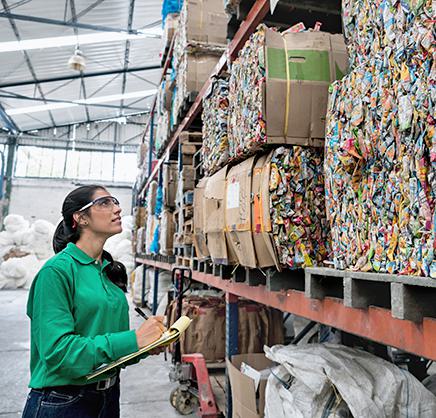
- 11 Sep 2025
In News:
The Ministry of Environment, Forest and Climate Change (MoEFCC) has notified the Environment Audit Rules, 2025, authorising the creation of a new, independent cadre of environment auditors. This marks a significant reform in India’s environmental governance framework, aiming to strengthen compliance, accountability, and transparency in monitoring ecological regulations.
Background and Rationale
Environmental monitoring in India is primarily overseen by the Central Pollution Control Board (CPCB), Regional Offices of MoEFCC, and State Pollution Control Boards (SPCBs)/Pollution Control Committees (PCCs). However, these bodies face persistent challenges of manpower shortage, limited resources, and infrastructural constraints, which hinder effective enforcement across the vast number of industries and projects.
To address this gap, the government has introduced environment auditors—certified professionals or accredited private agencies—who can supplement regulatory agencies in compliance verification. This is expected to enhance the implementation of environmental laws while promoting self-regulation by industries.
Key Features of Environment Auditors
- Legal Basis: Established under the Environment Audit Rules, 2025.
- Nature: Independent class of licensed professionals/agencies accredited to inspect, verify, and audit industrial and infrastructure projects.
- Functions:
- Conduct systematic environmental audits of projects under existing environmental laws.
- Sample and analyse emissions, effluents, and waste.
- Report non-compliance and compute environmental compensation.
- Act as verifiers under multiple regulatory frameworks, including the Green Credit Rules, E-Waste Rules, and Plastic Waste Rules.
- Provide independent data for climate action planning, ESG ratings, and sustainable development initiatives.
Linkage with Green Credit Rules
Audits by these accredited agencies will also support compliance with the Green Credit Rules, 2023, which incentivise activities like afforestation, water management, waste reduction, and pollution control through tradable “green credits.” Environment auditors will thus act as third-party verifiers, ensuring credibility in the crediting process.
Significance of the Reform
- Bridges Institutional Deficits: Addresses manpower and infrastructure shortages in SPCBs and CPCB.
- Promotes Accountability: Encourages industries to adopt self-compliance mechanisms rather than relying solely on regulatory enforcement.
- Enhances Transparency: Independent, third-party verification fosters stakeholder trust in environmental governance.
- Strengthens Climate Commitments: Provides robust compliance data for India’s climate action goals and sustainability reporting.
- Reduces Regulatory Burden: Eases the monitoring load on overstretched government agencies.
Particularly Vulnerable Tribal Groups (PVTGs)
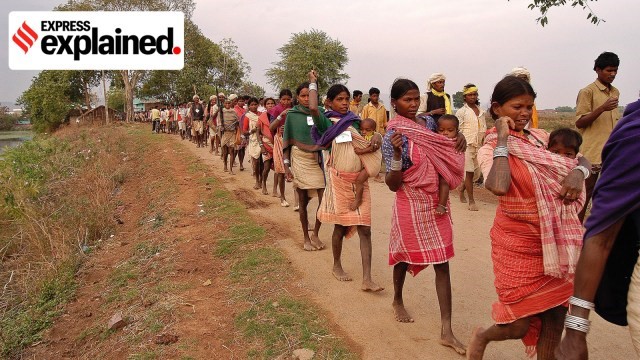
- 11 Sep 2025
In News:
- The Ministry of Tribal Affairs (MoTA) has requested the Registrar General and Census Commissioner of India (RGI) to enumerate Particularly Vulnerable Tribal Groups (PVTGs) separately in the upcoming Census.
- Aim: To capture population, households, and distinctive socio-economic and cultural features of PVTGs for better targeting of schemes such as the Pradhan Mantri Janjati Adivasi NyayMaha Abhiyan (PM JANMAN).
About PVTGs
- Definition: A sub-category of Scheduled Tribes (STs), considered the most disadvantaged among tribal communities.
- Origin: Concept recommended by the Dhebar Commission (1960–61) to address disparity within STs.
- Criteria for Identification:
- Declining/stagnant population
- Geographical isolation
- Pre-agrarian economy (hunting, gathering, shifting cultivation)
- Economic backwardness
- Low literacy
- Numbers:
- Initially 52 groups identified during the Fifth Five-Year Plan (1974–79).
- Later, 23 more groups added in 2006 → 75 PVTGs today.
- Spread: Across 18 states and the Andaman & Nicobar Islands.
Demographic Profile
- Estimated Population (2023 Survey): ~47.5 lakh PVTGs in India.
- Madhya Pradesh – 13.22 lakh (highest)
- Maharashtra – 6.7 lakh
- Andhra Pradesh – 5.18 lakh
- Smallest Groups: Sentinelese (Andaman & Nicobar Islands) with just 15 individuals.
- Largest Group: Baiga (Madhya Pradesh) – ~4.14 lakh population.
Habitat & Livelihoods
- Mostly live in remote forests, hilly regions, or islands with limited access to infrastructure.
- Livelihood sources:
- Hunting and gathering
- Shifting cultivation
- Non-Timber Forest Produce (NTFP) collection
- Livestock rearing
- Traditional artisan work
Cultural & Social Features
- Distinct cultural identities, practices, and languages.
- Often outside mainstream socio-economic and political processes.
- Many face critical health and education deficits.
Need for Separate Enumeration
- No separate count so far: PVTGs only enumerated under the general ST category; many grouped together under one nomenclature.
- Single-entry STs: Out of 75 PVTGs, 40 explicitly listed under Article 342 of the Constitution.
- Challenges: Current lists vary across states; some groups not separately listed in Census.
- Benefits of separate enumeration:
- Accurate population data for targeted schemes.
- Helps assess whether PVTG classification criteria remain relevant.
- Supports preservation of cultural identity.
- Identifies infrastructure gaps in health, education, and livelihoods.
Welfare Measures
- PM JANMAN Scheme (2023):
- Budget: ?24,104 crore.
- Coverage: More than 200 districts.
- Objective: Improve health, education, livelihoods, and basic amenities of PVTGs.
2D Materials
- 11 Sep 2025
In News:
- NITI Aayog’sFrontier Tech Hub, in collaboration with IISc Bengaluru, released the 4th edition of FutureFront Quarterly Insights titled “Introduction to 2D Materials”.
- Report highlights the need for India to invest early in 2D materials to lead in semiconductors, quantum technologies, and advanced electronics.
What are 2D Materials?
- Definition: Materials that are one atom thick, with unique electrical, thermal, and mechanical properties.
- Discovery: Graphene isolated in 2004 → Nobel Prize in Physics, 2010.
- Examples:
- Graphene (Carbon-based)
- Transition Metal Dichalcogenides (TMDCs) –MoS?, WS?
- Hexagonal Boron Nitride (h-BN)
- Xenes – Silicene, Phosphorene
Key Properties
- ~200× stronger than steel, yet flexible.
- Conducts electricity better than copper; spreads heat efficiently.
- Tunable band gaps → useful for semiconductors.
- Exhibits quantum effects (e.g., spin–valley coupling).
- Transparent & flexible → foldable/wearable electronics.
Applications
- Semiconductors: Chips up to 10× smaller than silicon-based chips.
- Quantum Computing: Hosting qubits, spin–valley interactions.
- Artificial Intelligence: Atom-thin memristors for neuromorphic computing.
- Optoelectronics: LEDs, photodetectors, ultra-thin solar cells.
- Green Tech: EV batteries, water filtration, aerospace composites.
Significance for India
- Tech Geopolitics: Control over supply chains and standards creates “tech choke points.”
- Challenge: Current reliance on licensed technologies → dependency (“umbilical cord” risk).
- Opportunity: Early push in 2D materials offers first-mover advantage in semiconductors.
- Global Status: USA, China, Japan, South Korea already investing heavily.
Policy Measures
- NITI Aayog: Urges creation of a complete 2D ecosystem – R&D, talent, supply chains, standards, manufacturing.
- MeitY& DST: Invited proposals for R&D and product development in 2D materials.
India–Singapore Comprehensive Strategic Partnership (CSP): 2025 Roadmap
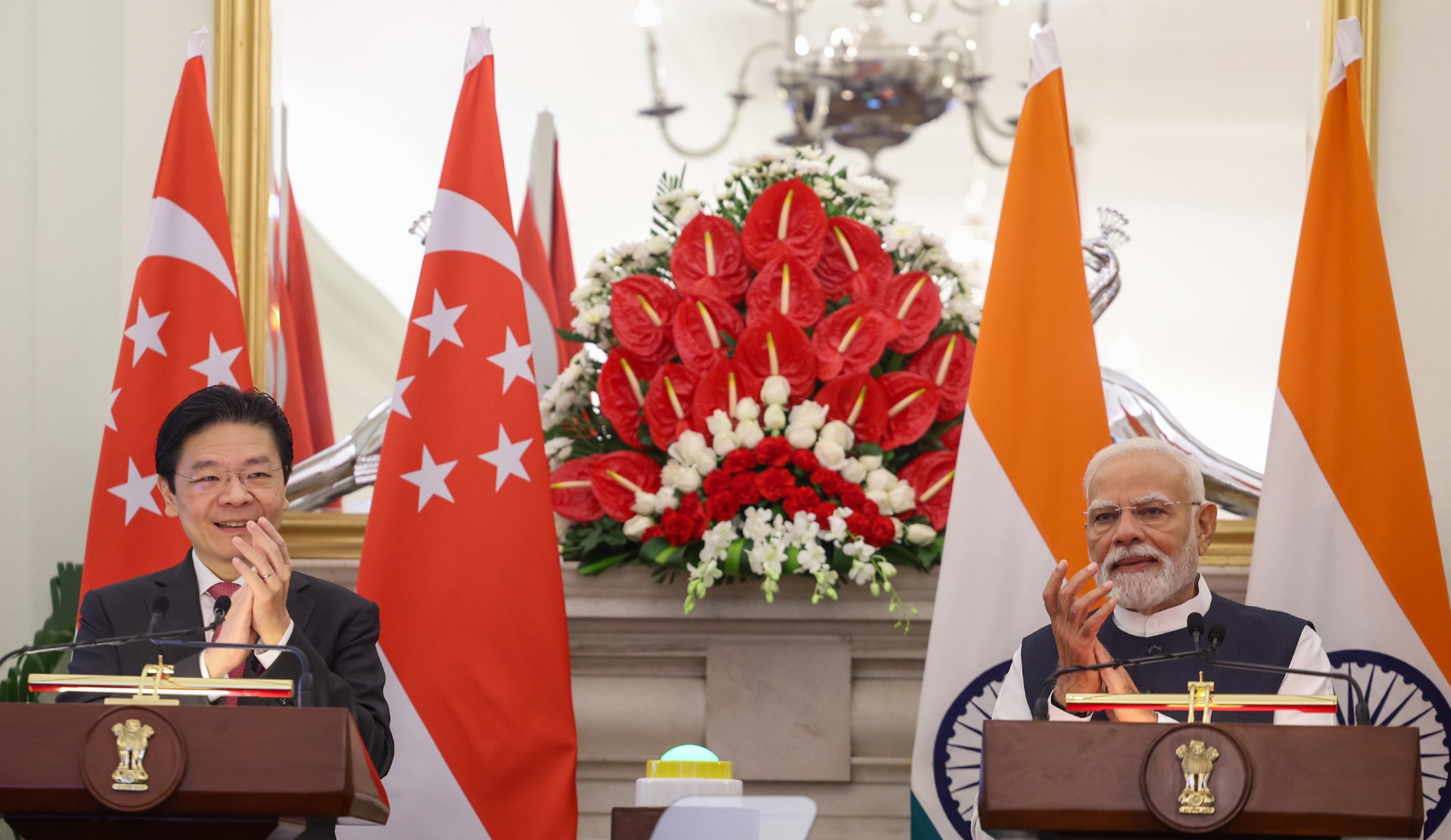
- 10 Sep 2025
In News:
The visit of Singapore Prime Minister Lawrence Wong to India in September 2025 marked 60 years of diplomatic relations and culminated in the adoption of a forward-looking Comprehensive Strategic Partnership (CSP) Roadmap. This elevates bilateral ties beyond trade to encompass technology, security, sustainability, and people-centric cooperation, reinforcing Singapore’s role as a vital partner in India’s Act East Policy and Indo-Pacific vision.
What is CSP?
- The Comprehensive Strategic Partnership (CSP) is the highest level of bilateral engagement between India and Singapore.
- It was elevated from a Strategic Partnership in 2015, and deepened further in 2025 through the adoption of a roadmap across eight key sectors.
Eight-Pillar Cooperation Framework
- Economic Cooperation
- Review of Comprehensive Economic Cooperation Agreement (CECA) and ASEAN-India Trade in Goods Agreement (AITIGA) in 2025.
- Partnership in semiconductors: Singapore produces 10% of global semiconductors and 20% of semiconductor equipment—key to India’s domestic chip manufacturing ambitions.
- Cooperation in industrial parks, sustainable manufacturing, capital market connectivity (NSE-IFSC-SGX GIFT Connect), and space collaboration.
- Skills Development
- Establishment of the National Centre of Excellence for Advanced Manufacturing in Chennai.
- Joint efforts in Technical and Vocational Education and Training (TVET), skill certification, train-the-trainers programmes, and nursing skill cooperation (expansion of the Singapore–Assam model).
- Digitalisation
- Expansion of UPI–PayNow linkage for seamless cross-border payments.
- Collaboration in fintech, cybersecurity, AI applications (healthcare, agriculture), start-up ecosystems, and adoption of TradeTrust for e-Bills of Lading in trade documentation.
- Sustainability & Green Growth
- Cooperation in green hydrogen, ammonia, and civil nuclear energy.
- Joint climate initiatives under Article 6.2 of the Paris Agreement.
- Collaboration in the International Solar Alliance (ISA) and Global Biofuels Alliance.
- Partnership in food security, agricultural exports, and water management.
- Connectivity
- Establishment of an India–Singapore Green and Digital Shipping Corridor linking major Indian ports with Singapore.
- Knowledge-sharing in aviation (air services agreement, sustainable aviation fuel, MRO collaboration).
- Healthcare & Medicine
- MoU on Health and Medicine: digital health, maternal and child health, disease surveillance, and medical R&D.
- Nursing cooperation and skills training to enhance employability in Singapore.
- People-to-People & Cultural Exchanges
- Student and professional exchanges, parliamentary engagement, think tank linkages, and public service training.
- Promotion of cultural heritage and maritime history collaborations.
- Defence& Security
- Enhanced military cooperation through SIMBEX 2025 and other tri-service exercises.
- Collaboration on defence technology (AI, automation, unmanned systems, quantum computing).
- Maritime security including submarine rescue cooperation and regional patrols.
- Strengthened counter-terrorism efforts via FATF and other multilateral mechanisms.
- Singapore acknowledged India’s interest in the Malacca Straits Patrol (MSP); India’s Andaman & Nicobar Command enhances regional maritime domain awareness.
Strategic Significance
- Positions Singapore as India’s gateway to Southeast Asia and the broader Indo-Pacific.
- Enhances regional security architecture aligned with ASEAN principles.
- Demonstrates how middle powers can address global uncertainties through technology partnerships, defence collaboration, and sustainable growth initiatives.
India’s Path to Atmanirbharta in Millets
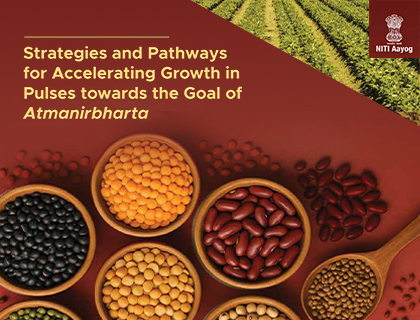
- 10 Sep 2025
In News:
The NITI Aayog report “Strategies and Pathways for Accelerating Growth in Pulses towards the Goal of Atmanirbharta” also provides broader lessons for achieving self-reliance in other food crops like millets, which face similar challenges of productivity, market stability, and sustainability.
Current Status of Millets in India
- Global Leadership: India contributes nearly 41% of world millet output (~16 million tonnes annually), making it the largest producer.
- Regional Spread: Five states—Rajasthan, Maharashtra, Karnataka, Uttar Pradesh, and Madhya Pradesh—produce over 80% of India’s millets.
- Consumption Decline: Per capita consumption has dropped from 32 kg/year in the 1960s to ~4 kg/year today, largely replaced by rice and wheat due to PDS bias.
- Exports: In 2022–23, India exported 1.8 million tonnes, mainly to UAE, Nepal, and Saudi Arabia, indicating rising global demand.
- Policy Push: The Union Budget 2023–24 renamed millets as “Shree Anna”, earmarking resources for research, processing, and marketing.
Importance of Millets
- Nutritional Security: Rich in iron, calcium, fiber, and proteins, helping fight malnutrition and anemia.
- Climate Resilience: Require 70% less water than rice and withstand drought, making them suitable for rainfed regions.
- Farmer Livelihoods: Low-input crops reduce reliance on irrigation and fertilizers, benefiting smallholders.
- Food Security: Inclusion in Mid-Day Meals, ICDS, and PDS enhances nutrition for vulnerable groups.
- Global Branding: India’s “Shree Anna” campaign has positioned millets as a superfood and strengthened agri-diplomacy.
Initiatives Taken
- NFSM-Millets: Expands area under millets, provides quality seed, and boosts productivity.
- Shree Anna Mission (2023): A six-year plan for millet research, processing, branding, and market integration.
- State Schemes: Karnataka’s Ksheera Bhagya included millets in school meals.
- International Recognition: India led the UNGA resolution declaring 2023 as International Year of Millets.
- Export Promotion: APEDA supports branding, GI tagging, and product exports to West Asia, US, and EU.
Challenges
- Consumer Preference Shift: Rice and wheat dominate diets due to PDS subsidies and cooking convenience.
- Low Productivity: Millet yields (~1.2 t/ha) remain below rice/wheat due to limited R&D and weak seed systems.
- Weak Market Linkages: Fragmented value chains, inadequate FPO presence, and absence of MSP-backed assured procurement.
- Post-Harvest Constraints: Poor processing/storage technologies and limited millet-based food industry.
- Policy Bias: NFSA subsidies for rice/wheat discourage millet adoption in rainfed belts.
Strategic Framework for Atmanirbharta
- Horizontal Expansion: Cultivate millets in rice fallows and degraded lands, especially in Eastern India.
- Vertical Expansion: Develop high-yielding, bio-fortified, climate-resilient varieties with robust seed systems.
- Cluster-Based Model: District-wise crop cluster strategy for focused interventions.
- Value Chain Integration: Establish processing hubs, branding centers, and FPO-led aggregation.
- Climate-Smart Farming: Promote organic and water-efficient millet practices, aligning with SDGs and climate goals.
National Institutional Ranking Framework
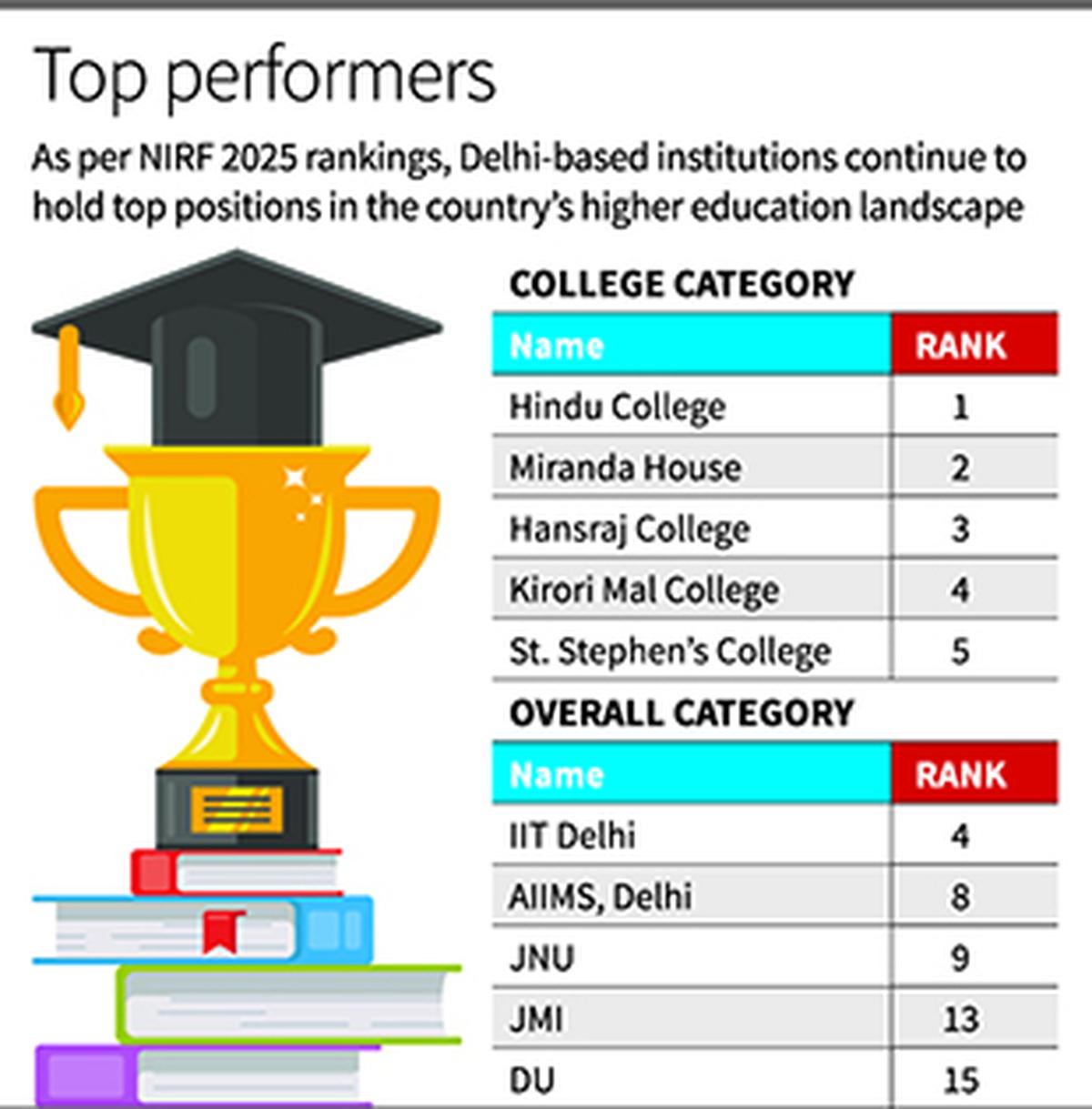
- 10 Sep 2025
In News:
The Ministry of Education has released the India Rankings 2025 under the National Institutional Ranking Framework (NIRF), first launched in 2015 to provide a transparent, data-driven methodology for ranking higher education institutions (HEIs).
Background
- Introduced in 2015 by the Ministry of Education (then MHRD).
- First rankings released in 2016 with one category (Universities) and three domains (Engineering, Management, Pharmacy).
- Now expanded to 9 categories and 8 subject domains, with SDG-based rankings introduced in 2025.
- Aim: To benchmark quality, ensure accountability, guide students/parents, and align with NEP 2020 goals of making India a knowledge superpower by 2047.
Parameters of NIRF (Weightage)
- Teaching, Learning & Resources (30%)
- Research & Professional Practice (30%)
- Graduation Outcomes (20%)
- Outreach & Inclusivity (10%)
- Perception (10%)
- Total of 19 sub-parameters used.
- Data sourced from institutions and third parties like Scopus, Web of Science, Derwent Innovation for publications, citations, and patents.
Participation & Growth
- 2025: 7,692 unique institutions applied (14,163 submissions), compared to 2,426 in 2016 – a 217% rise in participants and 297% rise in applications.
- Rankings now cover 17 categories, including overall, universities, colleges, research institutions, medical, dental, law, pharmacy, management, architecture & planning, agriculture, open universities, skill universities, state public universities, innovation, and SDGs.
Key Highlights of 2025 Rankings
- IIT Madras: Retains 1st rank in Overall category for the 7th year and Engineering for the 10th year. Also topped Innovation and SDGs categories.
- IISc Bengaluru: Ranked 1st among Universities for the 10th year; also leads in Research Institutions for the 5th year.
- IIM Ahmedabad: Topped Management for the 6th consecutive year.
- AIIMS Delhi: 1st in Medical for the 8th year; also ranked 8th in Overall. Additionally topped Dental for the first time.
- Jamia Hamdard (Delhi): 1st in Pharmacy for the 2nd year.
- IIT Roorkee: 1st in Architecture & Planning for the 5th consecutive year.
- NLSIU Bengaluru: Retains 1st position in Law for the 8th year.
- Hindu College (Delhi University): 1st among Colleges for the 2nd year, displacing Miranda House. Six of the top ten colleges are from Delhi.
- Indian Agricultural Research Institute (Delhi): 1st in Agriculture & Allied Sectors for the 3rd year.
- IGNOU (Delhi): 1st in Open Universities category for the 2nd year.
- Symbiosis Skill & Professional University (Pune): 1st in Skill Universities for the 2nd year.
- Jadavpur University (Kolkata): 1st in State Public Universities (introduced in 2024).
Significance
- NIRF has evolved into a credible national benchmark for higher education, enhancing global competitiveness, transparency, and inclusivity.
- With new categories such as Innovation, Skill Universities, and SDG rankings, it reflects India’s effort to link education with sustainability, entrepreneurship, and national development goals under NEP 2020.
- Participation trends demonstrate growing institutional acceptance of NIRF as a fair and transparent ranking mechanism.
Acanthamoeba

- 10 Sep 2025
In News:
Recent studies have revealed that Acanthamoeba, a free-living amoeba, is more widespread in Kerala’s waterbodies than previously believed. This raises significant public health concerns, especially due to its ability to cause severe and often fatal infections.
About Acanthamoeba
- Nature: A single-celled, free-living amoeba found in water, soil, and dust.
- Habitats: Frequently detected in swimming pools, hot tubs, household wells, drinking water systems, humidifiers, and HVAC (heating, ventilation, and air conditioning) systems.
- Mode of Transmission: Enters the human body through skin wounds, inhalation via lungs/nasal cavity, or eye exposure (notably among contact lens users).
Types of Infections
- Granulomatous Amebic Encephalitis (GAE): Affects the brain; almost always fatal.
- Cutaneous Acanthamoebiasis: Skin infection through wounds.
- Acanthamoeba Rhinosinusitis: Infection of the nasal cavity and sinuses.
- Acanthamoeba Keratitis: Serious eye infection, often in healthy individuals and contact lens users; may lead to permanent vision loss.
Kerala Case Study
- In 2013, research from the Regional Institute of Ophthalmology (Kerala) identified that several cases of non-healing corneal ulcers were due to Acanthamoeba keratitis, traced back to household wells as the infection source.
- Current findings indicate that Acanthamoeba is more widespread in Kerala’s natural and man-made waterbodies than earlier thought, heightening risks of waterborne and eye-related infections.
Significance
- The rise of Acanthamoeba-related keratitis underlines the need for safe water practices, improved eye hygiene among contact lens users, and awareness of rare pathogens.
- Its resilience across diverse environments makes it a public health challenge, especially in regions dependent on household wells and untreated water sources.
Debrigarh Wildlife Sanctuary
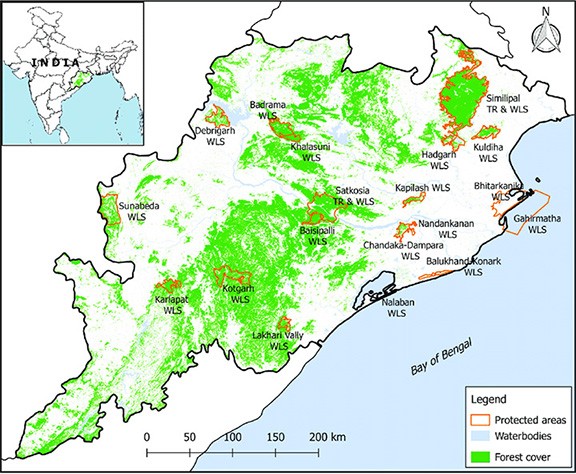
- 10 Sep 2025
In News:
Odisha’s Debrigarh Wildlife Sanctuary has recently been approved by the National Tiger Conservation Authority (NTCA) to become India’s newest tiger reserve. This marks a significant ecological achievement rooted in community participation, innovative eco-tourism, and conservation success.
Location and Geography
- Situated in western Odisha, near Sambalpur and Bargarh district, Debrigarh is bordered by the Hirakud Reservoir—a Ramsar-tagged wetland and part of the Mahanadi River system.
- The Hirakud Dam, the world’s longest earthen dam, lies adjacent to the sanctuary.
- Spread over 804 sq km, it includes around 347 sq km of core area, encompassing forests, grasslands, and wetlands, making it a unique amphi-terrestrial ecosystem.
Historical Significance
- The rugged terrain of Debrigarh was a strategic base for freedom fighter Veer Surendra Sai during his armed resistance against British colonial rule.
- Sites like Bara Bakra/Barapathara remain important heritage landmarks within the sanctuary.
Flora and Fauna
- Vegetation: Dominated by mixed and dry deciduous forests, with species such as Sal, Asana, Bija, Aanla, and Dhaura.
- Mammals: Indian bison (gaur), sambar deer, wild boar, chousingha (four-horned antelope), leopards, sloth bears, and wild dogs.
- Avifauna: Over 300 bird species, including 120 migratory species such as crested serpent eagle, drongo, tree pie, flower peckers, and white-eye oriental.
Eco-Tourism and Innovation
- Debrigarh is home to India’s first dark sky tourism hub, offering stargazing facilities.
- Adventure tourism includes safaris (53 vehicles), kayaking, cycling, and birding trails, designed with minimal ecological footprint.
Conservation and Community Model
- Declared a sanctuary in 1985 and upgraded to a tiger reserve in 2025.
- A community-led model: Over 400 families voluntarily relocated with rehabilitation packages; 155 villages actively participate in conservation and eco-tourism activities.
- Wildlife success: Expansion of prey base, increase in gaur population, and nearly 40% of herds comprising newborns, reflecting ecosystem recovery.
Significance
Debrigarh exemplifies a national model of integrated conservation, blending:
- Biodiversity protection (tiger reserve status, prey base recovery).
- Cultural heritage (legacy of Veer Surendra Sai).
- Sustainable eco-tourism (dark sky hub, water- and land-based safaris).
- Community participation (relocation and livelihood integration).
Its success offers a replicable blueprint for wildlife conservation across India, highlighting how ecological protection, heritage, and rural livelihoods can be balanced under one framework.
Majorana Particles
- 09 Sep 2025
In News:
One of the biggest challenges in quantum computing is decoherence — the tendency of qubits to lose their fragile quantum state due to environmental noise. To address this, scientists are exploring the potential of Majorana particles, exotic entities that are their own antiparticles. Their unique quantum properties may help build topological qubits, inherently resistant to errors, offering a radically new path toward practical quantum computing.
What are Majorana Particles?
- Proposed by: Italian physicist Ettore Majorana in 1937.
- Nature: A hypothetical fermion that is its own antiparticle, unlike electrons or protons which have distinct antimatter counterparts.
- Key Characteristics:
- Neutral in charge, hence elusive in detection.
- Do not annihilate on contact with themselves.
- In condensed-matter systems, they appear as quasiparticles (collective excitations) inside superconductors at ultra-low temperatures.
- Often exist in pairs: two spatially separated halves forming one quantum state.
- Exhibit non-Abelian statistics, meaning that exchanging or “braiding” them changes the overall quantum state in a predictable but unusual way.
Relevance to Quantum Computing
- Problem of Decoherence
- Qubits (quantum bits) exist in superpositions of 0 and 1, but are easily disturbed by external noise.
- Current quantum error correction requires hundreds to thousands of physical qubits to stabilise a single logical qubit, making scaling inefficient.
- Majorana-Based Solution
- Information can be encoded nonlocally across two Majorana modes.
- Disturbance of one half does not collapse the qubit; both must be affected simultaneously, making errors less likely.
- Braiding Majoranas enables topologically protected operations, where outcomes depend only on the braiding pattern and not on experimental imperfections.
- This reduces the need for massive error correction, making quantum hardware simpler and more stable.
- Current Research
- Experiments in superconducting nanowires (e.g., indium antimonide) have shown conductance patterns consistent with Majorana modes.
- However, alternative explanations exist, and conclusive proof requires demonstrating controlled braiding.
Wider Implications
- Quantum Technology: Potential to drastically lower the qubit requirement for large-scale quantum computers.
- Particle Physics: Ongoing efforts to test whether fundamental particles like neutrinos could be Majorana fermions.
- Condensed Matter Physics: Research into Majoranas has advanced material science, superconductors, and nanotechnology.
Challenges
- Experimental signals remain inconclusive, as other phenomena can mimic Majorana-like behaviour.
- Braiding demonstrations in two-dimensional architectures remain technically difficult.
- Majorana-based qubits are still at the proof-of-concept stage, not yet integrated into practical computing systems.
Self-Respect Movement
- 09 Sep 2025
In News:
The year 2025 marks the centenary of the Self-Respect Movement, a landmark social reform initiative launched by E.V. Ramasamy “Periyar” in Tamil Nadu. Emerging in 1925 through the Tamil weekly KudiArasu(Republic), the movement fundamentally reshaped Tamil society by questioning caste hierarchies, patriarchy, and religious orthodoxy, and by laying the foundations of modern Dravidian politics.
Origins and Context
- The Justice Party (South Indian Liberal Federation, 1916) had earlier challenged Brahmin dominance but remained largely confined to elite non-Brahmin interests.
- Periyar, after leaving the Indian National Congress in 1925, criticised the Justice Party for lacking a people-centric agenda and warned against creating a new non-Brahmin elite as oppressive as Brahmin oligarchy.
- Through KudiArasu,Periyar articulated a more radical vision — shifting reform efforts towards the common masses and framing an agenda of rationalism, equality, and self-respect.
Core Ideas and Aims
The Self-Respect Movement stood for:
- Abolition of caste hierarchy and Brahmanical dominance.
- Promotion of rationalism over religious superstition and ritualism.
- Assertion of dignity and equality for all individuals, irrespective of caste or gender.
- Social reform over political independence — unlike the Congress-led freedom struggle, which the movement saw as tied to Hindu orthodoxy.
Key Features and Reforms
- Self-Respect Marriages – Conducted without priests or rituals, challenging caste and religious authority.
- Women’s Rights – Advocacy of widow remarriage, right to divorce, property rights, reproductive choice (including abortion), and women’s education.
- Inter-caste Unity – Promotion of inter-caste marriages and solidarity across oppressed groups.
- Critique of Religion and Nationalism – Rejection of Gandhi’s “religion-tinted nationalism” and the Congress as a bastion of caste Hindu interests.
- Dravidian Identity – Assertion of Tamil/Dravidian identity and resistance to Sanskritichomogenisation.
Impact and Legacy
- Mass Awakening: Instilled pride and self-respect among non-Brahmin masses, transforming them from passive subjects of reform to active participants.
- Foundation for Dravidian Politics: Evolved into the DravidarKazhagam (DK) and inspired political parties like DMK and AIADMK, shaping Tamil Nadu’s welfare-driven governance model.
- Gender and Social Justice: Pioneered radical reforms in marriage, family, and gender relations, decades ahead of mainstream Indian discourse.
- Intellectual Tradition: Drew inspiration from earlier reformers such as IyotheeThass, Jyotirao Phule, and B.R. Ambedkar, situating Tamil Nadu in a wider anti-caste, rationalist movement.
Contemporary Relevance
As the movement enters its centenary in 2025, it resonates amid debates over Hindutva, cultural homogenisation, and caste discrimination. Its emphasis on rationalism, social equality, and grassroots empowerment continues to provide a counter-narrative to exclusivist identities and remains vital for advancing social justice and constitutional morality in India.
Senna spectabilis
- 09 Sep 2025
In News:
Invasive alien species are among the biggest threats to global biodiversity, ecosystem balance, and local livelihoods. In South India, Senna spectabilis, introduced in the 1980s for ornamental and fuelwood purposes, has emerged as a serious ecological challenge. Its unchecked spread across the Nilgiri Biosphere Reserve (NBR) has disrupted native ecosystems, escalated human-wildlife conflicts, and triggered large-scale forest degradation.
AboutSenna spectabilis
- Origin: Native to tropical America.
- Common Names: Popcorn Bush Cedar, Archibald's Cassia, Golden Shower, Fetid Cassia, etc.
- Characteristics: Grows 7–18 metres tall, forms dense sterile thickets, alters soil chemistry, suppresses native vegetation, and deprives herbivores of food.
- Confusion: Resembles Kerala’s state flower Cassia fistula (Kanikkonna), aiding its popularity in afforestation drives.
- IUCN Status: Classified as Least Concern.
- Challenge: Prolific seed production (up to 6,000 seeds annually), viability for nearly a decade, and quick regrowth even after cutting.
Ecological and Social Impacts
- Biodiversity Loss – Chokes out native species, prevents natural regeneration, and alters ecosystem dynamics.
- Food Chain Disruption – Loss of grasses and shrubs reduces prey availability for carnivores.
- Human-Wildlife Conflict – Decline in herbivore populations forces elephants, tigers, and deer to enter human settlements.
- Forest Degradation – Spread across Wayanad, Bandipur, and Mudumalai wildlife regions, threatening one of Asia’s most critical wildlife corridors.
- Spread Beyond South India – Reports of infestation in Andhra Pradesh, Goa, and Maharashtra.
A 2021 Rufford Foundation study showed Senna had spread over 23% of Wayanad Wildlife Sanctuary, now estimated at 40%.
Kerala’s “Wayanad Model” of Restoration
Kerala pioneered India’s first science-based, community-led eradication program at Tholpetty range, Wayanad Wildlife Sanctuary:
- Scale: 383 acres cleared; 46,450 trees uprooted; total eco-restoration covers 560 acres.
- Innovation: A lightweight hand-held uprooting tool designed by a marine engineer enabled complete root removal.
- Community Participation: Tribal youth (Kurichiya, Kattunaikka) trained as forest restoration guardians.
- Biodiversity Revival:
- 80 native tree species replanted.
- 15 indigenous grasses naturally regenerated.
- 184 bird species recorded in post-restoration zones.
- Return of elephants and deer to reclaimed patches.
This approach of “un-planting mistakes” emphasizes uprooting rather than cutting, ensuring long-term ecological recovery.
Policy and Replication
- Cross-border Extension: Karnataka adopted the Wayanad model in Nagarhole Tiger Reserve (DB Kuppe range). Tamil Nadu is exploring similar interventions.
- Utilisation of Biomass: Pilot projects have converted Senna wood into 6,000 tonnes of paper pulp; however, experts caution that biomass use alone will not halt invasion unless roots are fully removed.
- Other Invasives: The Senna challenge mirrors broader issues with Lantana, Eupatorium, and Acacia, which silently erode ecosystems across India.
Invasive Species
- Definition: An invasive species is a non-native organism that causes ecological, economic, or health harm in a new environment.
- Introduction Pathways: Ballast water of ships, aquaculture, ornamental planting, and accidental releases.
- Impacts: Extinction of native species, biodiversity loss, ecosystem degradation, and livelihood disruptions.
Graphite Spyware
- 09 Sep 2025
In News:
The Trump administration has unfrozen a stalled Biden-era contract with Paragon Solutions, granting the US Immigration and Customs Enforcement (ICE) access to its spyware tool Graphite. The contract, worth $2 million, was initially signed in September 2024 under the Department of Homeland Security (DHS) but paused due to concerns over violating the March 2023 executive order restricting spyware procurement.
About Graphite Spyware
- Nature: Advanced spyware capable of remote mobile phone access and control.
- Capabilities:
- Access photos, messages, and location data.
- Intercept encrypted communications (WhatsApp, Signal).
- Convert device into a listening tool by manipulating its microphone.
Paragon Solutions and Background
- Founded in Israel; co-founded by former PM Ehud Barak.
- Acquired in late 2024 by AE Industrial Partners (Florida) for $900 million.
- AE also owns REDLattice, a cyber-intelligence firm with ex-CIA officials.
- Track record:
- Claims to sell only to governments and law enforcement agencies for crime prevention.
- Terminated contract with Italy (Feb 2025) after WhatsApp (Meta) flagged misuse against journalists and activists in 24 countries.
Concerns and Implications
- Civil liberties: May expand ICE’s surveillance on undocumented immigrants, raising due process concerns.
- Rights at risk: Free speech and privacy could be undermined if spyware is misused.
- Expert view: Nadine Farid Johnson (Knight First Amendment Institute) warned that bypassing vetting requirements threatens constitutional safeguards.
Understanding Spyware
- Definition: Malicious software that collects data from devices and transmits it without user consent.
- Common Types:
- Adware: Tracks user activity, sells data to advertisers.
- Infostealers: Extracts sensitive data, including chats and files.
- Keyloggers: Record keystrokes, capturing passwords and personal information.
Niveshak Didi- Phase II
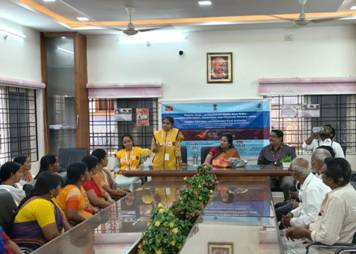
- 09 Sep 2025
In News:
The Investor Education and Protection Fund Authority (IEPFA), under the Ministry of Corporate Affairs, has launched Phase II of its flagship financial literacy initiative,Niveshak Didi, in Hyderabad. The program targets rural communities, with a special emphasis on women’s financial empowerment.
Objective and Significance
- Aim: To deepen financial awareness and enable women to make informed financial decisions, safeguard savings, and actively participate in the financial ecosystem.
- Approach: Based on the principle of “women for women”, recognizing that rural women are more comfortable discussing financial matters with female educators.
- Significance: Acts as a catalyst for bridging knowledge gaps, building confidence, and promoting financial resilience in rural communities.
Launch Highlights
Key points from the launch:
- Financial literacy sessions were conducted in Telugu to facilitate understanding.
- Emphasis on fraud prevention, safe investments, and digital financial literacy.
- IPPB’s extensive rural network ensures last-mile delivery of financial education and services.
Key Features of Phase II
- Expanded outreach to more villages and rural areas.
- Interactive training modules to improve engagement.
- Collaboration with grassroots organizations for maximum impact.
- Focus on savings, investment safety, fraud prevention, and digital transactions.
About IEPFA
- Established: 2016 under the Companies Act, 2013
- Functions:
- Manage the Investor Education and Protection Fund (IEPF)
- Facilitate refunds of unclaimed dividends, shares, matured deposits, and debentures
- Promote financial literacy and investor protection
- Major Initiatives:Niveshak Didi, Niveshak Panchayat, NiveshakShivir
Unique Disability ID (UDID) Scheme
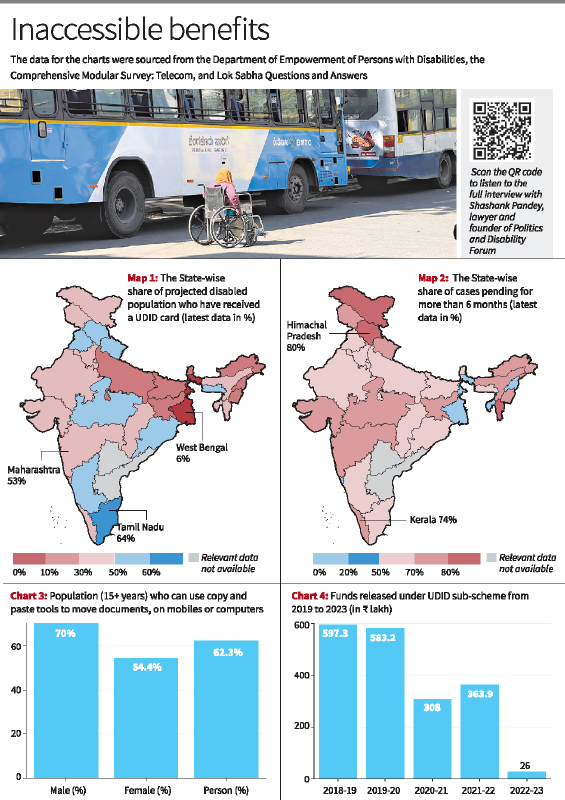
- 08 Sep 2025
In News:
The Unique Disability ID (UDID) project, launched by the Department of Empowerment of Persons with Disabilities (DEPwD), Ministry of Social Justice and Empowerment, aims to create a national database of Persons with Disabilities (PwDs) and provide them with a single identification document that is valid across the country. Despite its importance, recent data highlight serious gaps in its coverage and implementation.
Current Status and Coverage
- Less than 40% of India’s projected PwD population have been issued UDID cards.
- Over 11 lakh applications remain pending, with more than 60% delayed for over six months.
- In most States, fewer than half of PwDs possess the card; only Tamil Nadu, Meghalaya, Odisha, and Karnataka have crossed the 50% coverage mark.
- West Bengal stands out with an extremely low coverage of around 6%.
- Data for Andhra Pradesh and Telangana were unavailable separately.
Features of the UDID Card
- Structure: An 18-character alphanumeric ID, encoding details such as state, district, disability type, year of birth, and a security checksum.
- Types of Cards (based on disability percentage):
- White: Below 40% disability.
- Yellow: 40%–80% disability.
- Blue: Above 80% disability.
- Issuance: Authorized by district hospitals or the hospital where the PwD is undergoing treatment, under the Rights of Persons with Disabilities (RPwD) Act, 2016.
Objectives of the UDID Project
- Creation of a centralized, nationwide database of PwDs.
- Elimination of duplicate records and ensuring portability across States.
- Online and offline submission of applications, with provision for renewal and updates.
- Tracking of physical and financial progress of beneficiaries through an integrated Management Information System (MIS).
- Facilitation of access to benefits under schemes such as:
- ADIP Scheme – providing assistive devices like wheelchairs, prostheses, and hearing aids.
- Scholarships for education.
- Reservations in employment and educational institutions.
Implementation Challenges
- Delayed Processing: Over half of all applications remain pending beyond six months, with Himachal Pradesh, Ladakh, and Mizoram having the highest backlog.
- Digital Divide: The application process requires online submissions and document uploads, which excludes many due to low digital literacy. Only about 60% of Indians above 15 years can use basic digital tools; the share is even lower among women and PwDs.
- Staggered Roll-out: Earlier, States issued disability certificates locally; the transition to UDID was not communicated effectively, leading to confusion.
- Reduced Funding: While overall allocation for PwD welfare has increased, budgetary support for the UDID sub-scheme has declined, constraining outreach.
- Political Marginalization: PwDs constitute only 2.68 crore people (2011 Census), making them a relatively small political constituency. This reduces policy priority, as their collective influence on electoral outcomes is limited.
Significance
- Welfare Access: UDID acts as a gateway to schemes, ensuring uniformity and portability across States.
- Data-Driven Policy: Enables real-time monitoring and evidence-based policymaking.
- Administrative Efficiency: Prevents duplication and leakages in welfare delivery.
- Social Inclusion: Supports the objectives of the RPwD Act, 2016 and aligns with India’s commitments under the UN Convention on the Rights of Persons with Disabilities (UNCRPD).
Incentive Scheme to Promote Critical Mineral Recycling

- 08 Sep 2025
In News:
- The Union Cabinet has approved a ?1,500 crore Incentive Scheme to promote critical mineral recycling in India, marking a significant step towards reducing import dependence and ensuring sustainable supply chain resilience.
- The scheme forms part of the broader National Critical Mineral Mission (NCMM), which seeks to build domestic capacity in exploration, mining, acquisition of foreign assets, and recycling of critical minerals.
Key Features of the Scheme
- Tenure: Six years, from FY 2025-26 to FY 2030-31.
- Outlay: ?1,500 crore.
- Eligible Feedstock:
- E-waste
- Lithium-ion battery (LIB) scrap
- Other scrap sources such as catalytic converters from end-of-life vehicles.
- Beneficiaries:
- Large, established recyclers.
- Small/new recyclers and start-ups (allocated one-third of scheme outlay).
- Applicability: Investments in new units, as well as expansion, modernization, or diversification of existing units.
Incentive Structure
- Capex Subsidy:
- 20% subsidy on plant, machinery, equipment, and utilities for projects that commence production within the stipulated timeframe.
- Delays will lead to reduced subsidies.
- Opex Subsidy:
- Linked to incremental sales over FY 2025-26 baseline.
- 40% subsidy in the 2nd year (FY 2026-27).
- 60% subsidy in the 5th year (FY 2030-31), subject to achieving threshold sales.
- Ceilings per Entity:
- Large recyclers – ?50 crore (with ?10 crore cap on Opex subsidy).
- Small recyclers/start-ups – ?25 crore (with ?5 crore cap on Opex subsidy).
- Scope: Incentives are limited to the extraction of critical minerals, not just black mass production.
Expected Outcomes
- Development of 270 kilotons of annual recycling capacity.
- Production of around 40 kilotons of critical minerals annually.
- Mobilization of about ?8,000 crore investment.
- Creation of nearly 70,000 direct and indirect jobs.
Significance
- Strategic Minerals Security: Provides near-term solutions to bridge supply-demand gaps until new mines and foreign acquisitions materialize.
- Circular Economy Boost: Promotes recycling of high-value e-waste and LIB scrap, reducing environmental load.
- Atmanirbhar Bharat: Strengthens domestic industries in electronics, renewable energy, and EV sectors by ensuring reliable access to lithium, cobalt, nickel, and other critical minerals.
- Inclusivity: Special provisions for start-ups and small recyclers to encourage innovation and wider participation.
Matanomadh in Kutch
- 08 Sep 2025
In News:
- A remote village in Gujarat’s Kutch district, Matanomadh, is emerging as a potential analogue site for India’s future Mars missions.
- Researchers from the Space Applications Centre (ISRO), Savitribai Phule Pune University, and the Birbal Sahni Institute of Palaeosciences have confirmed the presence of jarosite, a mineral also discovered on Mars, making the region significant for planetary studies.
Jarosite and Its Relevance
- Composition: Jarosite is a yellow-brown mineral composed of potassium, iron, and sulphate, typically formed in arid, saline environments under extreme geochemical conditions.
- Formation: On Earth, it is linked to volcanic activity, where volcanic ash containing sulphur reacts with water-rich environments.
- Global Occurrence: Rare on Earth; found in Mexico, Canada, Japan, Spain, USA (Utah, California), and in India at Kerala’s Varkala cliffs and now Kutch.
- On Mars: First detected in 2004 by NASA’s Opportunity Rover at Meridiani Planum, jarosite is considered strong evidence of water activity on the red planet.
The Kutch Discovery
- Age: Jarosite deposits at Matanomadh have been dated to around 55 million years ago (Paleocene period).
- Geological Significance: Indicates that environmental and chemical conditions in Kutch millions of years ago resembled those on Mars.
- Current Findings: The mineral occurs as fine deposits mixed with clay. When mixed with water, this clay expands—closely resembling Martian sulphate-clay formations.
Importance for Space Research
- Field Analogue for Mars: The site provides a natural laboratory to test rovers, instruments, drilling, geochemistry, and astrobiology experiments for upcoming missions like Mangalyaan-2.
- Astrobiology Potential: Sulphates such as jarosite can trap organic molecules, offering clues to possible microbial life.
- Palaeo-evolution Insights: Helps decode the geological and chemical history of Mars.
- Complementary Sites: While Ladakh’s Tso Kar Valley (HOPE Mission) simulates Martian living conditions, Kutch offers geological parallels for studying surface mineralogy.
Challenges
- The site is currently waterlogged and threatened by coal mining activities in the vicinity. Scientists have urged that Matanomadh be declared a site of planetary geo-heritage to protect its unique deposits.
Foreigners Tribunals
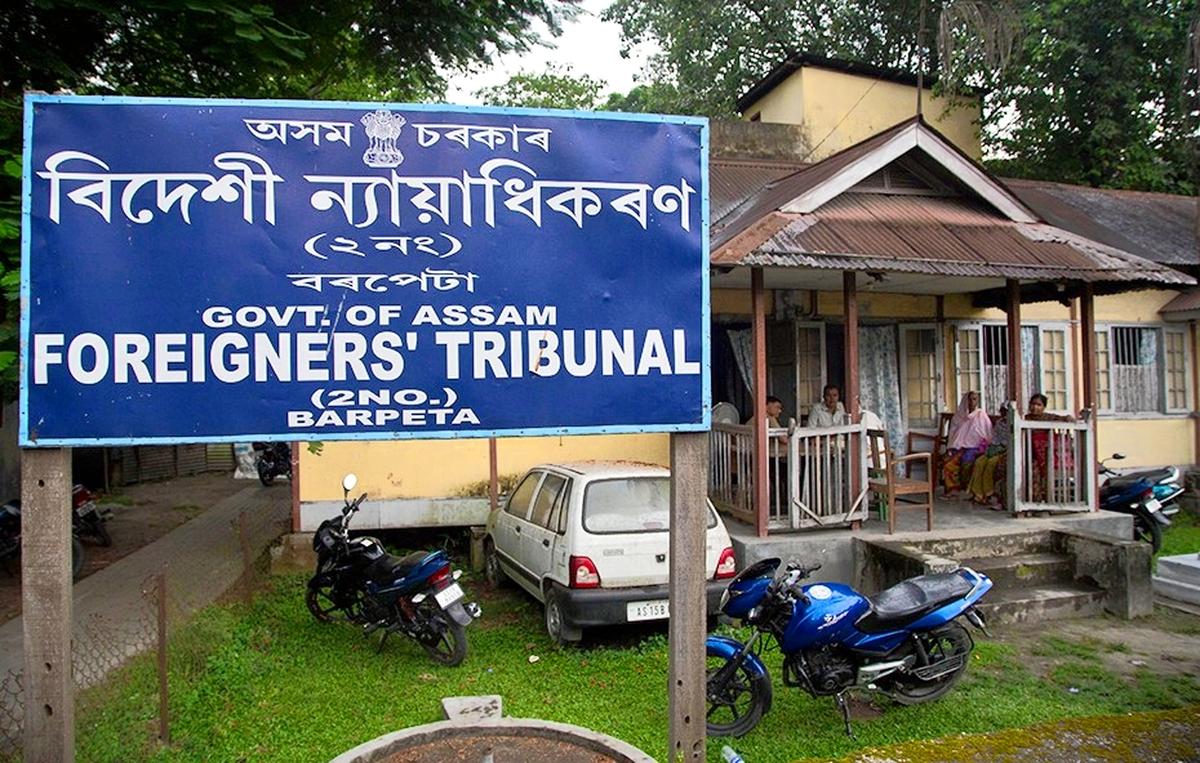
- 08 Sep 2025
In News:
The Union Home Ministry has recently empowered Foreigners Tribunals (FTs) with expanded judicial authority under the Immigration and Foreigners Act, 2025, which came into effect in September 2025. This marks a significant shift in India’s approach to dealing with suspected illegal immigrants, particularly in states like Assam.
Background
- Earlier Framework: Foreigners Tribunals were originally set up under the Foreigners (Tribunals) Order, 1964, issued under the Foreigners Act, 1946. Their main role was to determine whether a person was a foreign national.
- In Assam, such tribunals were established after the Illegal Migrants (Determination by Tribunals) Act, 1983 was struck down by the Supreme Court in 2005. Currently, around 100 FTs are functional in the state.
- Earlier, detention of declared illegal immigrants was carried out through executive orders, without direct judicial sanction.
Provisions of the 2025 Act
The Immigration and Foreigners Act, 2025 repeals older legislations and replaces the 1964 Order, giving FTs enhanced powers akin to those of a civil court and a first-class judicial magistrate.
New Powers of Foreigners Tribunals:
- Summoning and enforcing attendance of individuals and examining them under oath.
- Requiring production and verification of documents.
- Issuing commissions for the examination of witnesses.
- Directing suspects (“proceedees”) to appear in person.
- Issuing arrest warrants in case of non-appearance.
- Sending suspected or declared foreigners to detention/holding centres pending deportation.
Procedural Aspects:
- Notices are served to suspected individuals to prove their citizenship within 10 days.
- Cases are to be disposed of within 60 days of reference.
- Declared foreigners are placed in detention or transit camps until deportation.
Significance
- Strengthened Legal Framework: Brings uniformity and judicial backing to the process of identifying and detaining unauthorised foreigners.
- Due Process Assurance: Ensures quasi-judicial scrutiny before declaring an individual a foreigner.
- Regional Relevance: Particularly critical in Assam and Northeast India, which face unique challenges of cross-border migration.
- Administrative Clarity: Clearly demarcates powers between executive authorities and tribunals.
Exercise MAITREE
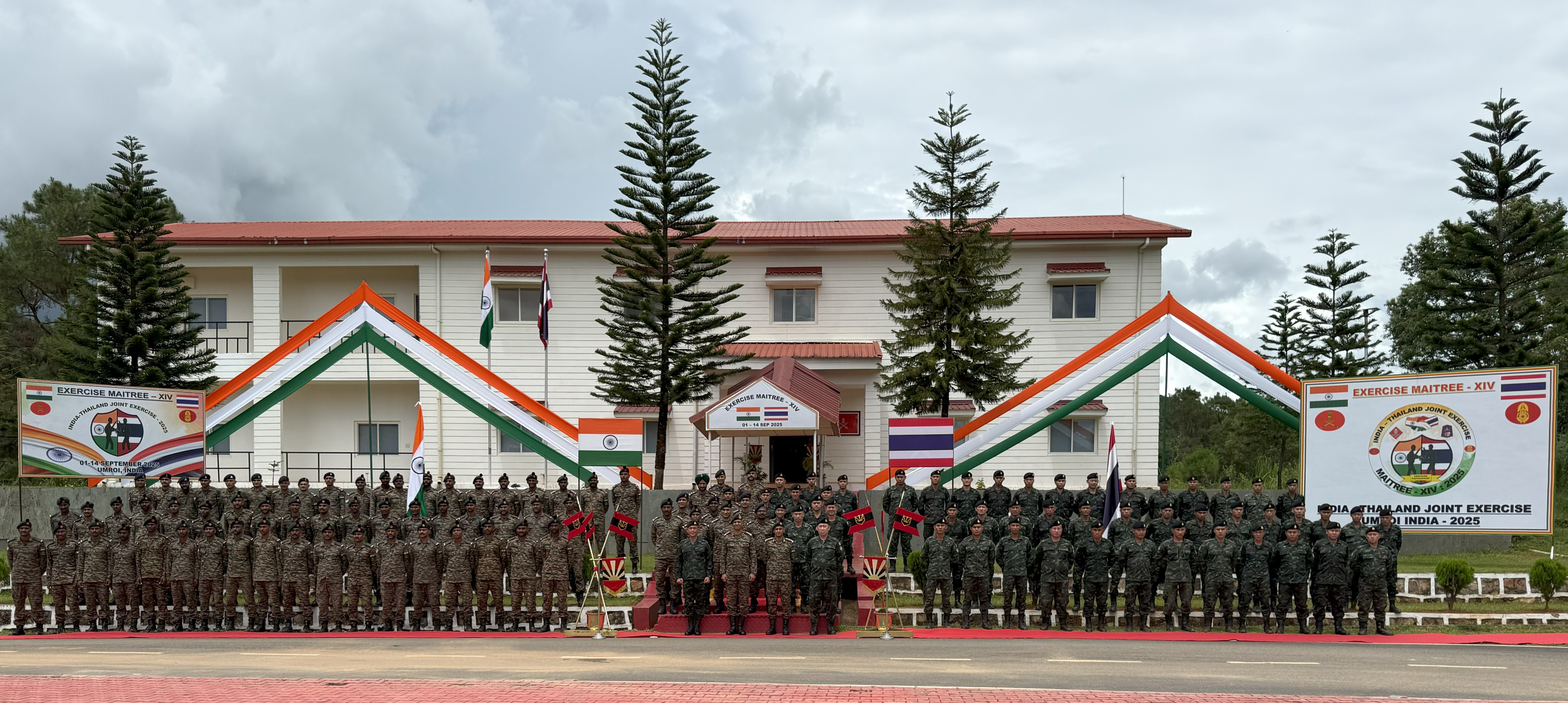
- 08 Sep 2025
In News:
The 14th edition of Exercise MAITREE-XIV, a joint military exercise between India and Thailand, commenced at the Joint Training Node (JTN), Umroi, Meghalaya.
Background
Instituted in 2006, Exercise MAITREE is a bilateral military exercise aimed at enhancing cooperation, interoperability, and mutual understanding between the Indian Army and the Royal Thai Army. The 13th edition was held at Fort Vachiraprakan, Tak Province, Thailand.
Key Features of MAITREE-XIV
- Participants:
- Indian Army – 120 personnel, represented by a battalion of the Madras Regiment.
- Royal Thai Army – 53 personnel from the 1st Infantry Battalion, 14th Infantry Brigade.
- Focus Area:
- Company-level counter-terrorist operations in semi-urban terrain, in accordance with Chapter VII of the UN Charter.
- Tactical drills, joint planning, special arms skills, physical fitness, and raiding operations.
Significance
- Reinforces bilateral defence cooperation and strengthens regional security architecture.
- Reflects the shared commitment of India and Thailand towards peace, stability, and counter-terrorism efforts.
- Enhances the operational synergy of both armies, particularly in addressing contemporary security challenges in the Indo-Pacific.
Global Peace Index (GPI) 2025
- 07 Sep 2025
In News:
The Global Peace Index (GPI) 2025, compiled by the Institute for Economics and Peace (IEP), ranked Iceland as the world’s most peaceful country, a position it has held since 2008. Covering 163 independent states and territories that represent 99.7% of the global population, the index provides a comparative measure of peace across nations.
India’s Performance
- Rank: 115th out of 163 countries.
- Score: 2.229, reflecting a 0.58% improvement over the previous year.
- Improvement Drivers: Gradual decline in domestic disputes and relative stability in societal security.
- Persistent Challenges: High militarisation, cross-border tensions, and sporadic internal unrest continue to limit India’s peacefulness score.
Global Rankings
- Top 10 Peaceful Nations (2025): Iceland, Ireland, New Zealand, Finland, Austria, Switzerland, Singapore, Portugal, Denmark, and Slovenia.
- Least Peaceful Nations: Russia, Ukraine, Sudan, Democratic Republic of Congo, and Yemen.
- Regional Highlights:
- Europe dominates the top 10 due to low crime, political stability, and strong institutions.
- South America witnessed improvements, with Argentina and Peru making notable gains.
- Sub-Saharan Africa and the Middle East remain the least peaceful, marred by civil wars, terrorism, and political instability.
Criteria of Assessment
The GPI ranks countries across 23 indicators grouped under three domains:
- Societal Safety and Security – crime rates, political stability, refugee impact.
- Ongoing Domestic and International Conflict – wars, terrorism, civil unrest.
- Militarisation – defence expenditure, arms imports/exports, armed personnel.
Global Peace Trends 2025
- The global average peacefulness has declined, primarily due to growing internal conflicts, rising militarisation, and widening geopolitical divides.
- While countries like Iceland scored consistently high due to low crime, absence of an army, and strong social trust, many regions faced setbacks with increased unrest and repression (e.g., Pakistan, Bangladesh, South Africa).
Gastrochiluspechei
- 07 Sep 2025
In News:
Researchers have discovered a new orchid species, Gastrochiluspechei, in Vijoynagar, Arunachal Pradesh, one of India’s remotest administrative circles bordering Myanmar. Until now, this orchid was known to bloom only in Myanmar, highlighting the floristic link between Arunachal Pradesh and Southeast Asia.
Key Features of Gastrochiluspechei
- Genus: Belongs to the Gastrochilus genus, first recorded in 1825, comprising 77 species spread across tropical, subtropical, and temperate Asia.
- Identification: Distinguished by short axillary inflorescence, brightly coloured flowers, a distinct epichile on the hypochile, and two porate, globose pollinia on a slender stipe.
- Habitat: Thrives in moist, evergreen rainforests, growing on small trees near riverbanks.
- Flowering Season: Blooms between September and October.
Floristic Significance
- With this finding, India now records 23 species of the Gastrochilus genus, of which 15 are from Arunachal Pradesh.
- The discovery reinforces Arunachal Pradesh’s title as the “Orchid State of India,” which harbours about 60% of the country’s orchid diversity.
- It also provides scientific evidence of the biogeographical continuity between Arunachal Pradesh and Myanmar, where the species was earlier recorded in Kachin’s Putao County.
Broader Context
Orchids are not only indicators of ecological richness but also hold significance for conservation, floriculture, and sustainable livelihoods. The discovery of Gastrochiluspechei adds to India’s botanical wealth and underscores the need to preserve fragile Himalayan ecosystems where such rare species thrive.
BHARATI Initiative
- 07 Sep 2025
In News:
The Agricultural and Processed Food Products Export Development Authority (APEDA) has launched the BHARATI initiative (Bharat’s Hub for Agritech, Resilience, Advancement and Incubation for Export Enablement) to accelerate India’s agricultural and processed food exports.
Objectives and Vision
- Empowering Startups: BHARATI will support 100 agri-food and agri-tech startups in its first pilot cohort beginning September 2025.
- Export Growth: It is aligned with APEDA’s vision of achieving $50 billion in agri-food exports by 2030.
- Innovation & Competitiveness: The initiative seeks to promote cutting-edge solutions in GI-tagged products, organic foods, superfoods, processed agri-foods, livestock, and AYUSH-based products.
Key Features
- Technology Integration: Focus on AI-based quality control, blockchain-enabled traceability, IoT-enabled cold chains, agri-fintech, sustainable packaging, and sea protocols.
- Export Challenges Addressed: Product development, value addition, perishability, wastage reduction, quality assurance, and logistics efficiency.
- Collaborative Ecosystem: Startups will be connected with agri-innovators, tech providers, and SPS-TBT focused ventures to deliver scalable, cost-effective export solutions.
- Capacity Building: Selected startups will undergo a three-month acceleration programme covering product development, export readiness, regulatory compliance, and market access.
Institutional Support
To build a strong support ecosystem, APEDA will partner with:
- State agricultural boardsand agricultural universities
- IITs, NITs, and premier research institutions
- Industry bodies and accelerators
Significance
- Strengthens India’s global competitiveness in agri-food exports.
- Promotes Atmanirbhar Bharat, Vocal for Local, Digital India, and Start-Up India missions.
- Encourages demand-driven backward integration, innovation, and sustainable food value chains.
- Creates a scalable annual incubation model, ensuring long-term growth in agricultural and processed food exports.
India Green Energy Paradox
- 07 Sep 2025
In News:
India’s energy sector is witnessing a paradoxical challenge: while 44 GW of renewable energy (RE) capacity is ready for deployment, it remains stranded due to lack of Power Purchase Agreements (PPAs), weak demand absorption, and systemic barriers. This “green energy paradox” highlights the tension between India’s global climate commitments and its domestic energy realities.
Current Energy Landscape
Despite global recognition for its renewable push, India’s energy mix remains heavily dependent on coal:
- Coal & lignite: ~79% of domestic energy (FY23).
- Renewables (excluding large hydro): Only 3.8% of domestic production.
- Oil & gas imports: Over 85% oil and 50% gas, making India highly import-dependent.
While renewable capacity is expanding, India continues to lock itself into long-term coal PPAs, raising both environmental and economic concerns.
Green Energy Paradox: Two Dimensions
1. Supply-Side Readiness
- 44 GW of RE projects are deployment-ready but idle without PPAs.
- Tariff challenges: Solar power in India remains costlier than global benchmarks due to high cost of capital, GST, duties, and import taxes.
- Storage costs: Storage-backed renewables (battery/pumped hydro) raise tariffs to ?6.6–?9/unit, making them uncompetitive against coal.
- Government interventions: Initiatives like the National Solar Mission, Hybrid Policy, Production-Linked Incentive (PLI) for batteries, and Viability Gap Funding (VGF) aim to reduce costs and promote adoption.
2. Demand-Side Weaknesses
- Discom reluctance: Financially stressed state distribution companies (discoms) prefer coal PPAs due to predictable pricing.
- Grid inflexibility: Poor transmission capacity, absence of smart meters, and weak demand-response systems hinder RE integration.
- Slow electrification: With electricity accounting for just 20% of India’s total energy consumption (vs. 28% in China), limited adoption of EVs, electric cooking, and industrial heating suppresses RE demand.
- Reliability deficit: India’s System Average Interruption Duration Index (SAIDI) stands at 600 minutes/year, compared to 35 minutes in Thailand and 46 in Malaysia, deterring energy-intensive industries.
Barriers to Integration
- Structural: Debt-ridden discoms, weak cross-subsidy frameworks, and lack of flexible grids.
- Economic: High capital costs, expensive borrowing, and unviable storage solutions.
- Environmental: Long-term coal lock-ins undermine India’s Net Zero 2070 goals, while idle RE capacity delays emissions reduction.
Initiatives Taken
- Renewable Purchase Obligations (RPOs): Mandate states to procure RE, though targets often clash with local grid capability.
- Green Open Access Rules (2022): Allow industries to directly purchase renewable power, bypassing discoms.
- National Green Hydrogen Mission: Positions hydrogen as a long-term storage solution and clean fuel.
- PLI for batteries and India Semiconductor Mission: Support indigenous storage manufacturing.
Afghanistan Earthquake
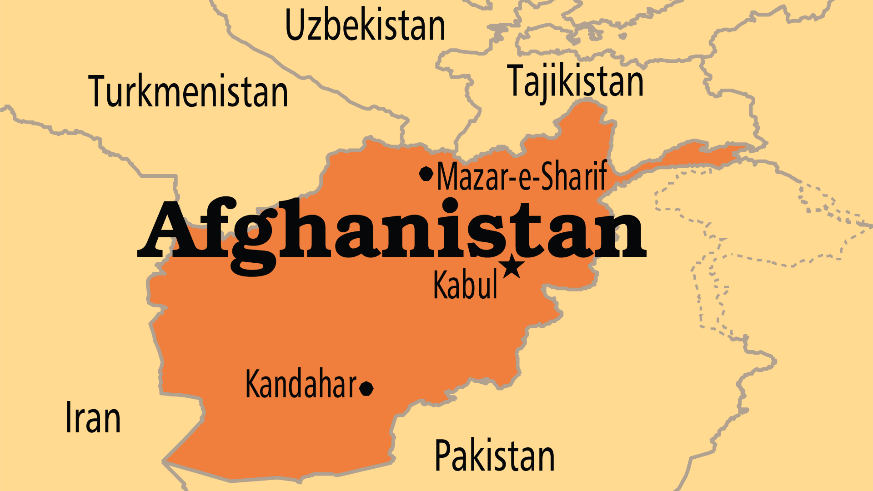
- 07 Sep 2025
In News:
A devastating 6.0-magnitude earthquake struck eastern Afghanistan near Jalalabad, killing over 800 people and injuring at least 2,800 across Kunar, Nangarhar, and Laghman provinces. The tremors, felt from Kabul to Islamabad, destroyed homes in remote mountainous regions and highlighted Afghanistan’s acute vulnerability to natural disasters.
Afghanistan’s Seismic Vulnerability
Afghanistan lies at the collision zone of the Eurasian and Indian tectonic plates, making it one of the world’s most seismically active regions. The Hindu Kush mountain range, part of the greater Himalayan system, witnesses frequent tremors. Since 1900, at least 12 earthquakes exceeding magnitude 7 have struck northeast Afghanistan.
Most Afghans live in low-rise, mud-brick dwellings, which offer little resistance to seismic shocks. With poor infrastructure, fragile governance, and limited access to technology, the human toll of disasters is amplified.
Geographic and Geostrategic Context
Afghanistan is a landlocked, multi-ethnic nation in South-Central Asia, historically situated at the crossroads of trade and power rivalries—from the “Great Game” between Britain and Russia to Cold War confrontations.
- Capital: Kabul
- Neighbours: Pakistan, Iran, Turkmenistan, Uzbekistan, Tajikistan, and China (via the narrow Wakhan Corridor).
- Geographic Features:
- Mountains: The Hindu Kush dominates, with passes like the Khyber and Shebar, linking Central and South Asia.
- Rivers: Amu Darya (north), Kabul River (tributary of Indus), Helmand (longest at 715 miles), and Hari Rud (Afghanistan–Iran boundary).
- Regions:
- Central Highlands – rugged, earthquake-prone terrain.
- Northern Plains – fertile, resource-rich areas with gas reserves.
- Southwestern Plateau – arid deserts such as Registan and Margow.
These geographical features make Afghanistan both strategically significant and highly disaster-prone.
Indian Rosewood
- 06 Sep 2025
In News:
- Indian rosewood (Dalbergialatifolia in the south and Dalbergia sissoo in the north), often referred to as the “ivory of the forests”, is prized globally for its rich grain, deep colour, and durability.
- It serves as both a premium timber resource for furniture, handicrafts, and musical instruments, and an ecologically significant species that enhances soil fertility through nitrogen fixation, supports bird and insect diversity, and acts as a long-term carbon sink.
Distribution and Habitat
- Dalbergialatifolia: Native to the Nilgiris, Anamalai, and Parambikulam ranges in Tamil Nadu, with significant habitats in Karnataka and Kerala.
- Dalbergia sissoo (North Indian rosewood): Found along the Himalayan foothills, from Afghanistan to Bihar, typically growing along riverbanks between 200–1,400 m elevation.
- Recent habitat modelling by the Institute of Wood Science and Technology (IWST), Bengaluru, using 3,224 geo-referenced points and 19 bioclimatic variables, found that only 17.2% of India’s suitable habitat lies within protected areas.
Current Status in Tamil Nadu
- Field surveys (2019–2025) by IWST and the Indian Council of Forestry Research and Education revealed that Tamil Nadu has the lowest density of rosewood in South India, with just 2.85 trees per 0.1 hectare, compared to 6.19 in Karnataka and 5.38 in Kerala.
- The populations are dominated by mature, ageing trees with little or no natural regeneration, and seedlings are rare or absent in many areas.
- The situation has worsened after the lapse of the Tamil Nadu Rosewood (Conservation) Act, 1995, which had regulated felling of rosewood for nearly three decades.
- With no renewal after February 2025, privately owned rosewood, especially in tea plantations of the Nilgiris, faces heightened risk of exploitation.
Threats
- Weak Legal Safeguards – With the lapse of State legislation, most rosewood outside protected areas is exposed to felling and land-use change.
- Climate Change – IWST modelling projects shrinking suitable habitats in coming decades, further compounding the species’ vulnerability.
- International Demand – Luxury furniture and musical instruments drive high global demand.
- Regeneration Crisis – Ageing tree populations without sufficient seedlings threaten long-term survival.
Conservation Status
- IUCN Red List: Vulnerable (since 2018).
- CITES: Appendix II (regulated trade).
- India’s Last National Assessment (2011–12): Near Threatened.
Blue Sea Dragons
- 06 Sep 2025
In News:
Recently, several beaches in Guardamar del Segura, Spain, were closed after an unusual invasion of blue sea dragons (Glaucus atlanticus), a rare but strikingly beautiful species of sea slug. Authorities imposed the ban as a precautionary measure to protect residents and tourists from potential stings.
About Blue Sea Dragons
- Taxonomy: A type of mollusk belonging to the nudibranch family.
- Other Names: Also called blue sea slugs, sea swallows, and blue angels.
- Appearance: Known for their ethereal blue and silver coloration and small size (1–3 cm), often floating upside down on the ocean surface.
- Distribution: Found across Atlantic, Pacific, and Indian Oceans in tropical and temperate waters.
- Reproduction: They are hermaphrodites, possessing both male and female reproductive organs.
Feeding and Venom Storage
- Diet consists mainly of venomous siphonophores such as the Portuguese man-o’-war and bluebottle jellyfish.
- Instead of digesting their prey’s stinging cells (nematocysts), they store and concentrate them in finger-like structures on their backs called cerata.
- This makes their sting more potent than that of the original prey, giving them a powerful defence mechanism despite their fragile appearance.
Impact on Humans
- Though not venomous on their own, their stored nematocysts can deliver extremely painful stings.
- Reported symptoms include nausea, vomiting, pain, dermatitis, allergic reactions, and post-inflammatory hyperpigmentation.
- Children and elderly individuals are especially vulnerable.
Ramon Magsaysay Award 2025
- 06 Sep 2025
In News:
The Ramon Magsaysay Award 2025, Asia’s most prestigious honour, has been conferred on ‘Educate Girls’, an Indian non-profit organisation working to promote girls’ education in rural and remote areas. This marks the first time an Indian NGO has received this award, making it a historic milestone for the country.
About Educate Girls
- Founded by Safeena Husain, Educate Girls (also known as the Foundation to Educate Girls Globally) has been instrumental in addressing gender inequality in education.
- The organisationmobilises communities to enrol out-of-school girls, improve learning outcomes, and empower them to continue education.
- Its grassroots volunteers, known as Team Balika and preraks, work in partnership with governments, donors, and local communities.
About Ramon Magsaysay Award
- Instituted in 1958 to celebrate “greatness of spirit and transformative leadership in Asia”.
- Named after Philippine President Ramon Magsaysay, remembered for his integrity and people-centric leadership.
- From 1958–2008, the award was given in six categories: Government Service, Public Service, Community Leadership, Journalism & Creative Communication Arts, Peace & International Understanding, and Emergent Leadership.
- Since 2009, except for Emergent Leadership, it is presented without fixed categories.
- Winners receive a certificate and a medallion bearing the image of Ramon Magsaysay.
- The award ceremony takes place annually in Manila, Philippines on 31st August, Magsaysay’s birth anniversary.
- Till date, over 300 individuals and organisations across Asia have been recognised.
Other 2025 Awardees
- Shaahina Ali (Maldives): Environmental activist.
- Fr. Flaviano Antonio L. Villanueva (Philippines): Human rights advocate known for opposing extrajudicial killings during the Duterte administration.
Exercise Yudh Kaushal 3.0
- 06 Sep 2025
In News:
The Indian Army recently conducted Exercise Yudh Kaushal 3.0 in the high-altitude Kameng region of Arunachal Pradesh, reaffirming its preparedness for next-generation warfare in extreme Himalayan terrain.
The exercise underscored the Army’s shift towards multi-domain operations, greater reliance on emerging technologies, and closer engagement with the domestic defence industry.
Key Highlights of the Exercise
- Terrain & Conditions: Conducted in high-altitude, harsh Himalayan conditions, validating combat effectiveness and operational resilience.
- Technological Integration: Featured drone surveillance, precision strikes, real-time target acquisition, air–littoral operations, and synchronized battlefield tactics, reflecting the Army’s technological adaptation.
- Debut of ASHNI Platoons: Marked the first operational deployment of the newly raised ASHNI platoons, designed to combine advanced technology with traditional combat expertise for decisive battlefield advantage.
- Indigenous Defence Industry Participation: Reflected India’s emphasis on Atmanirbhar Bharat and the “Decade of Transformation,” with active involvement of the domestic defence sector.
Strategic Significance
- Demonstrated India’s ability to conduct large-scale, coordinated operations in sensitive border regions.
- Validated the Army’s preparedness for multi-domain conflicts involving land, air, cyber, and unmanned systems.
- Reinforced the importance of self-reliance in defence technology by incorporating indigenous systems in live combat simulations.
- Showcased India’s resolve to maintain combat superiority in high-altitude operational theatres along the Line of Actual Control (LAC).
Mira Variable Stars
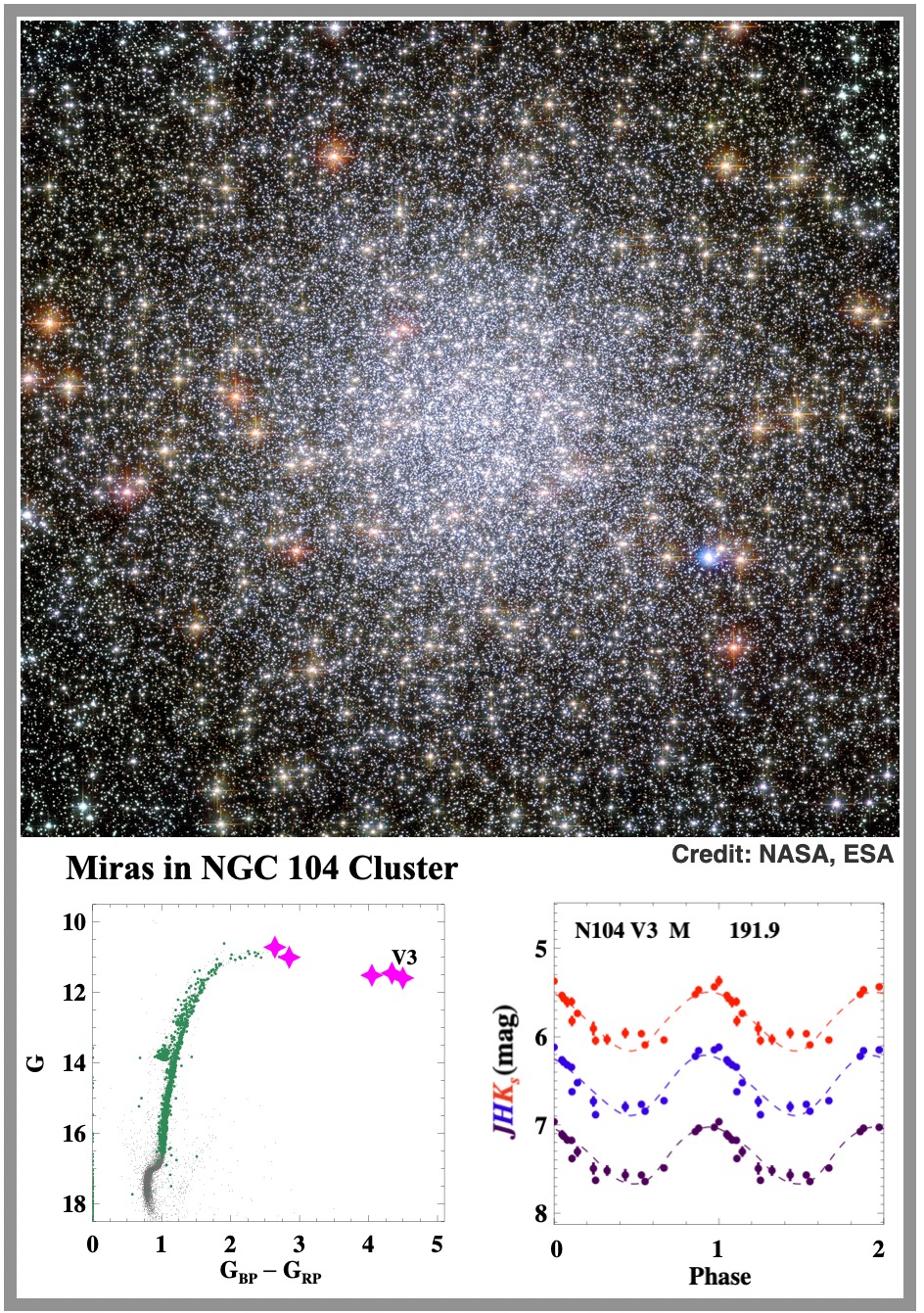
- 06 Sep 2025
In News:
A landmark study by the Inter-University Centre for Astronomy and Astrophysics (IUCAA), Pune, in collaboration with international scientists, has provided the most precise measurement yet of the Hubble constant, the rate of expansion of the universe. The work, co-authored by Nobel laureate Adam Riess, introduces oxygen-rich Mira variable stars as a new and reliable anchor in the cosmic distance ladder.
What are Mira Variables?
- Mira (Omicron Ceti), discovered in the 17th century, was the first known variable star, named “Mira” meaning ‘the wonderful’ in Latin.
- Mira variables are cool, giant stars (surface temperature ~3,000 K) in their late life stages.
- They exhibit regular cycles of expansion and contraction, leading to predictable brightness variations over 100–1,000 days.
- Crucially, their luminosity is strongly related to pulsation periods, making them excellent “standard candles”—objects of known brightness used to measure cosmic distances.
The IUCAA Study
- Led by Prof. Anupam Bhardwaj, the team studied 40 oxygen-rich Mira stars across 18 stellar clusters in our galaxy.
- Using precise distance data from the European Space Agency’s Gaia mission, they calibrated the absolute luminosities of these stars with unprecedented accuracy.
- This enabled an independent period–luminosity relationship, bypassing traditional reliance on Cepheid variables.
- The study achieved a 3.7% precision in measuring the Hubble constant—the most accurate determination using Miras to date.
Significance for Cosmology
- Mira-based calibration provides an independent check on Cepheid-based measurements, reducing metallicity-related uncertainties (Miras are 3 times less sensitive to metal abundance than Cepheids).
- Current results show consistency between Mira-anchored and Cepheid-anchored Hubble constant values, suggesting that the long-standing “Hubble tension”—the mismatch between early-universe (CMB-based) and late-universe (stellar-based) expansion rates—is not due to measurement errors.
- This points toward possible new physics beyond the Standard Cosmological Model.
Limitations and Future Prospects
- Presently, only two supernova-host galaxies contain known Mira stars, limiting large-scale calibration.
- Upcoming surveys with the Rubin Observatory are expected to discover numerous Miras in distant galaxies, significantly improving cosmic distance measurements.
- The study thus opens pathways to a more accurate determination of the universe’s age and size.
Equity Derivatives
- 05 Sep 2025
In News:
The Securities and Exchange Board of India (SEBI) has introduced a new regulatory framework to monitor intraday positions in equity index derivatives, effective October 1, 2025. The move is aimed at mitigating systemic risks, ensuring orderly market functioning, and curbing speculative excesses, especially on expiry days.
Key Features of the Framework
- Net Intraday Position Cap: ?5,000 crore per entity in index options (compared to the existing end-of-day limit of ?1,500 crore).
- Gross Intraday Position Cap: Restricted to ?10,000 crore, the same as the current end-of-day limit. This applies separately to long and short positions.
- Applicability: Framework applies only to index options, which dominate India’s derivatives market.
- Objectives:
- Prevent creation of outsized intraday exposures.
- Provide predictability and operational clarity.
- Strike a balance between ease of trading and robust risk management.
- Facilitate market-making activity on all trading days while ensuring discipline on expiry days.
Understanding Derivatives
Derivatives are financial contracts whose value is derived from an underlying asset, such as stocks, indices, commodities, or currencies. They allow investors to speculate on price movements, hedge against risks, or enhance returns.
Types of Equity Derivatives
- Futures Contracts: Obligates buyer and seller to transact an equity asset at a predetermined price on a future date (e.g., Nifty and Sensex futures).
- Options: Provides the right, but not obligation, to buy (call) or sell (put) an underlying asset at a set price before or on expiry.
- Forwards: Similar to futures but non-standardised and over-the-counter (not exchange-traded).
- Swaps: Involves exchange of cash flows linked to equity returns; used for hedging or investments.
Significance of Equity Derivatives in Markets
- Leverage: Small upfront margin allows control over large positions, magnifying gains (and risks).
- Hedging: Protects portfolios from adverse price fluctuations.
- Arbitrage Opportunities: Exploit price mismatches across markets.
- Diversification: Enhances portfolio risk-spread.
- Liquidity: High trading volumes ensure ease of entry and exit.
- Income Generation: Writing options or structured strategies provide additional returns.
- Cost Efficiency: Lower transaction costs compared to direct investment in underlying assets.
Why SEBI’s Move Matters
- Risk Containment: Prevents destabilisation of markets due to oversized speculative positions.
- Systemic Stability: Reduces chances of flash crashes or manipulative trades, especially during contract expiries.
- Market Discipline: Introduces quantitative caps that align with global best practices.
- Investor Confidence: Ensures orderly trading, which is crucial for attracting both institutional and retail investors.
Vikram 3201
- 05 Sep 2025
In News:
India crossed a significant milestone in its journey towards technological self-reliance in space electronics with the unveiling of the Vikram 3201, the nation’s first fully indigenous 32-bit microprocessor for rockets and satellites. The processor was showcased at the Semicon India 2025 conference, symbolising the country’s growing semiconductor capabilities and its commitment to Atmanirbhar Bharat.
Development and Collaboration
- Designed by: Vikram Sarabhai Space Centre (VSSC), ISRO
- Fabricated at: Semiconductor Laboratory (SCL), Chandigarh
- Launched by: Ministry of Electronics & Information Technology at Semicon India 2025
- Marks the first indigenously designed and fabricated processor of this scale for launch vehicle avionics.
Why the Processor Matters
- Unlike consumer processors (used in laptops or mobiles), the Vikram 3201 is space-grade, built to handle the navigation, control, and mission management of launch vehicles.
- Space electronics must withstand radiation, extreme vibration, and temperature fluctuations (–55°C to +125°C).
- With this chip, India reduces reliance on foreign processors, securing autonomy for critical missions and reducing supply-chain vulnerabilities.
Key Features
- Upgrade over Vikram 1601 (a 16-bit processor used since 2009).
- 32-bit architecture – enables faster, more precise data handling.
- 64-bit floating-point operations – ensures accurate trajectory and guidance calculations.
- Ada programming language support – widely used in aerospace for safety-critical systems.
- On-chip 1553B bus interfaces – allows seamless communication between avionics modules.
- Fabricated with 180 nm CMOS technology at SCL – reliable for aerospace-grade use.
- Military-grade resilience – rigorously tested for launch stresses and in-orbit functioning.
Testing and Validation
- Successfully tested on PSLV-C60 mission, where it powered the Mission Management Computer on the PSLV Orbital Experimental Module (POEM-4).
- Its in-orbit validation has given ISRO confidence for wider deployment in future missions.
Ecosystem and Complementary Developments
- ISRO has developed a complete software ecosystem: Ada compilers, assemblers, linkers, simulators, and Integrated Development Environments. A C-compiler is also under development.
- Alongside Vikram 3201, ISRO introduced:
- Kalpana 3201 – a 32-bit SPARC V8 RISC microprocessor with open-source compatibility.
- Reconfigurable Data Acquisition Systems (RDAS) – two variants.
- Relay Driver IC.
- Multi-Channel Low Drop-out Regulator IC.
- Together, these reduce dependency on imported avionics components.
Strategic Significance
- Technological Sovereignty: Eliminates dependency on foreign space-grade processors.
- Atmanirbhar Bharat: Strengthens indigenous capability in high-end semiconductor manufacturing.
- Semiconductor Push: Part of India’s broader semiconductor strategy, with five fabrication units under construction and incentives under the Design-Linked Incentive (DLI) scheme.
- Global Context: Space-grade processors are niche, not mass-produced, making indigenous capability a strategic advantage.
PRATUSH Telescope
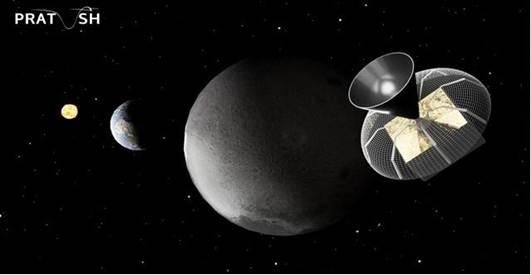
- 05 Sep 2025
In News:
Scientists at the Raman Research Institute (RRI), Bengaluru, with support from the Department of Science and Technology (DST) and collaboration with ISRO, have proposed a pioneering lunar mission called PRATUSH (Probing ReionizATion of the Universe using Signal from Hydrogen). This futuristic radiometer aims to detect faint 21-cm radio signals from hydrogen atoms, which hold imprints of the Cosmic Dawn—the epoch when the first stars and galaxies formed, fundamentally shaping the Universe.
The Science of the Cosmic Dawn
- The Cosmic Dawn marks the birth of the first stars and galaxies, initiating the reionization of the Universe.
- Detecting the 21-cm hydrogen signal is crucial to study this epoch, but the signal is extremely faint, buried under strong terrestrial radio interference.
- The far side of the Moon—a naturally radio-quiet zone—offers the ideal site for such observations, free from Earth’s radio noise and ionospheric distortions.
About PRATUSH Payload
- Type: Radiometer telescope for low-frequency radio astronomy.
- Orbit: Preferred circumlunar orbit around the far side of the Moon.
- Core Components:
- Wideband frequency-independent antenna (30–250 MHz).
- Self-calibratable analog receiver.
- Digital correlator with 100 kHz spectral resolution.
- Mission Strategy:
- Continuous observation of large sky regions.
- Recording beam-averaged radio spectra at high spectral resolution.
- Nominal lifetime: Two years, ensuring high signal-to-noise ratio with broad sky coverage.
Role of Single-Board Computer (SBC)
At the heart of PRATUSH lies a compact Single-Board Computer (SBC), initially modeled on a Raspberry Pi, designed to overcome stringent size, weight, and power (SWaP) constraints of space missions.
Functions of SBC:
- Master controller of the radiometer system.
- Coordinates antenna, analog receiver, and Field Programmable Gate Array (FPGA) for digital processing.
- Records, stores, and calibrates high-speed data streams.
- Performs preliminary data processing onboard.
Performance:
- Laboratory tests collected 352 hours of reference data, reducing receiver noise to just a few millikelvins, confirming its sensitivity to the Cosmic Dawn signal.
- Next-generation space-grade SBCs will replace commercial models for flight.
Significance of PRATUSH
- Scientific Breakthrough:
- May unlock how the first stars sculpted the Universe.
- Potential to discover new physics related to early cosmic evolution.
- Technological Innovation:
- Demonstrates the effectiveness of low-power, miniaturized controllers in deep-space astronomy.
- Showcases India’s ability to design low-mass, high-capability payloads.
- Strategic Value:
- Strengthens India’s presence in lunar science and radio astronomy.
- Enhances collaboration between RRI, DST, and ISRO.
- Global Impact:
- Contributes to humanity’s collective effort to detect the Universe’s earliest signals.
- Positions India as a frontrunner in next-generation space astrophysics.
High Performance Biomanufacturing Platforms
- 05 Sep 2025
In News:
- India has taken a significant step towards strengthening its bioeconomy with the launch of High-Performance Biomanufacturing Platforms by the Department of Biotechnology (DBT) and the Biotechnology Industry Research Assistance Council (BIRAC) under the BioE3 Policy (Biotechnology for Environment, Economy & Employment).
- The initiative aims to provide world-class infrastructure, tools, and expertise to start-ups, SMEs, industry, and academia, enabling the transition of bio-based innovations from laboratories to production scale.
Key Features of the Platforms
- National Network: 21 bio-enablers comprising advanced biofoundries and biomanufacturing hubs.
- Focus Areas:
- Microbial strains & smart proteins
- Probiotics & bio-based chemicals
- Next-generation cell therapies & mRNA medicines
- Marine bio-innovations
- Sustainable biofuels
- Support System: Offers integrated facilities for R&D, innovation, and commercialization.
- Alignment: Consistent with Atmanirbhar Bharat vision and India’s climate commitments.
Objectives
- Economic: Position India as a global bioeconomy leader and build a multi-trillion-dollar bioeconomy by 2047.
- Strategic: Reduce dependence on imports by strengthening indigenous capabilities.
- Social: Generate employment, build capacity, and support youth-led innovations.
- Environmental: Promote green growth and sustainable production systems.
Significance of the Initiative
- Economic Potential
- India now accounts for ~20% of global biomanufacturing capacity.
- Bio-industrial sector contributes 47.2%, bio-farmers 35.2%, bio-services 9.4%, and bio-agri8.1% to the bioeconomy.
- Reinforces India’s status as the world’s fourth-largest economy and a rising biotech powerhouse.
- Employment and Innovation
- Creates an enabling ecosystem for start-ups and SMEs, boosting entrepreneurship.
- Generates skilled jobs in cutting-edge sectors like synthetic biology, bioenergy, and therapeutics.
- Strategic Autonomy
- Enhances self-reliance in critical biomanufacturing domains such as vaccines, smart proteins, and biofuels.
- Reduces vulnerability to global supply chain disruptions.
- Sustainability and Viksit Bharat 2047
- Supports green growth through bio-based, low-carbon solutions.
- Anchors India’s long-term development vision of Viksit Bharat by 2047.
Pradhan Mantri Garib Kalyan Anna Yojana (PMGKAY)
- 05 Sep 2025
In News:
The Pradhan Mantri Garib Kalyan Anna Yojana (PMGKAY), launched in March 2020 as a COVID-19 relief measure, has evolved into one of the world’s largest food security initiatives.
Implemented under the National Food Security Act (NFSA), 2013, the scheme provides free rice and wheat to eligible households through the Public Distribution System (PDS). While it has ensured nutritional security for ~81 crore people, the soaring food subsidy bill (?2.03 lakh crore in FY26) has prompted the Union government to initiate a review for fiscal sustainability.
Key Features of PMGKAY
- Coverage: ~81.35 crore beneficiaries (75% rural, 50% urban population).
- Entitlements:
- Antyodaya Anna Yojana (AAY): 35 kg per family per month.
- Priority Households (PHH): 5 kg per person per month.
- Annual Distribution: 56–58 million tonnes of foodgrains.
- Mode of Delivery: ~5.4 lakh fair price shops (FPSs).
- Cost: Entirely free of cost since January 2023 (earlier, NFSA beneficiaries paid nominal prices).
- Transparency Measures: 83% Aadhaar-based e-KYC completed; 204 million household ration cards seeded.
Current Review and Concerns
- Rising Subsidy Burden
- Food subsidy bill has crossed ?2 lakh crore in FY26, widening the fiscal strain.
- Gap between economic cost (procurement, storage, transportation) and issue prices has grown, since prices were never revised after NFSA’s enactment.
- Ineligible Beneficiaries
- About 10% of the 800 million listed beneficiaries were found in government databases (taxpayers, vehicle owners, company directors, etc.).
- Several beneficiaries did not lift their share of grains for months.
- States like Rajasthan, Odisha, and Madhya Pradesh have started removing ineligible ration cards.
- Re-verification Drive
- States asked to reverify ration cards issued a decade ago to weed out ineligible households and add new ones.
- Field verification and inter-ministerial data convergence with CBDT, CBIC, MCA, Road Transport, and PM-Kisan databases are being carried out.
- Equity Concerns
- In some cases, single-member AAY households received 35 kg/month, raising questions on fairness.
- Conversely, deserving families remain excluded due to outdated lists.
Reform Measures Underway
- Database Cleansing: Aadhaar-based authentication to ensure rightful targeting.
- Infrastructure Creation: ?1.25 lakh crore project for modern grain storage in cooperatives and integration of PACS godowns into the supply chain.
- Policy Options:
- Introducing a partial cost-sharing model for better-off sections.
- Rationalising coverage to focus more on nutritional outcomes (shift to nutri-cereals).
- Savings redirected towards agri-R&D, irrigation, and value chain efficiency.
Japan Post Bank’s Digital Yen (DCJPY)
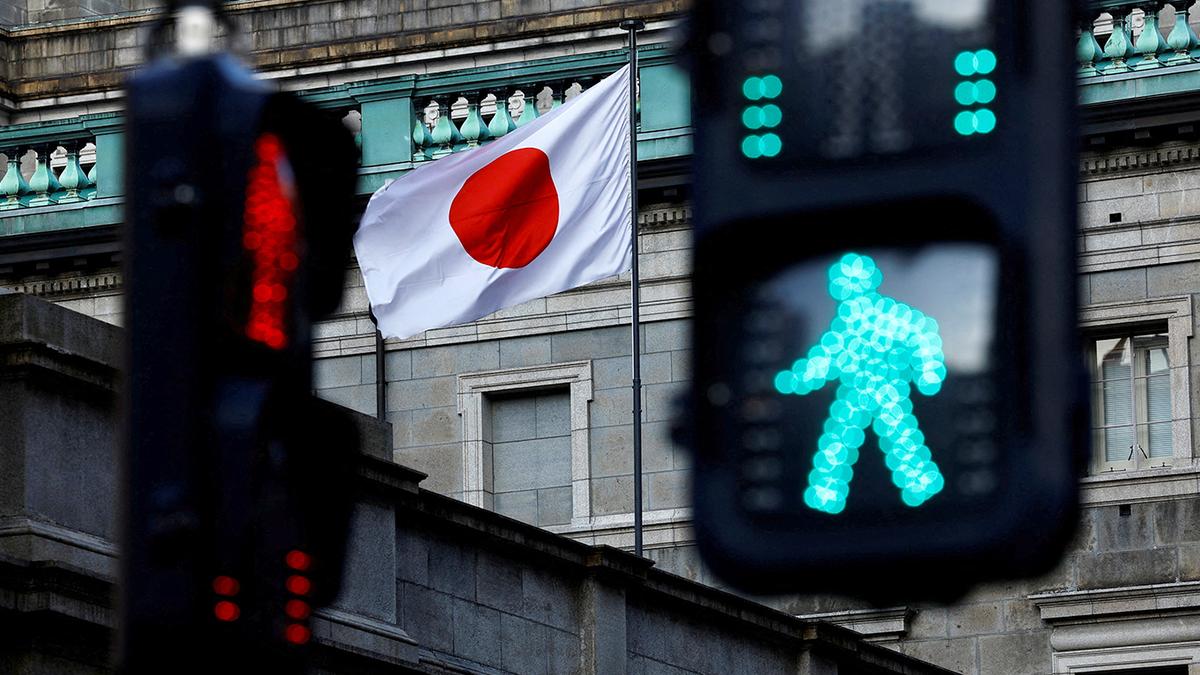
- 04 Sep 2025
In News:
Japan is set to make a significant leap in the digital finance space with the launch of a blockchain-based digital yen (DCJPY) by fiscal 2026. Announced by the Japan Post Bank—a major financial institution with significant government shareholding—this initiative marks one of the largest government-linked ventures into deposit-based digital currencies worldwide.
About DCJPY
- Nature: A blockchain-based deposit currency.
- Backing: Fully backed 1:1 by fiat yen, eliminating volatility risks common to cryptocurrencies.
- Issuer: Japan Post Bank, in collaboration with DeCurret DCP (subsidiary of Internet Initiative Japan).
- Regulation: Issued through the formal banking system, giving it more security, oversight, and credibility compared to private stablecoins.
How It Works
- Customers convert yen deposits into DCJPY tokens.
- These tokens can be used for:
- Real-time digital transactions.
- Settlement of digital securities.
- Asset tokenization and blockchain-based asset transfers.
- Entirely recorded on a blockchain ledger, ensuring traceability, transparency, and instant settlement.
Key Features
- Full Fiat Backing: Maintains stability with zero volatility.
- Blockchain-based: Offers decentralisation, improved security, and transparency.
- Instant Settlement: Removes delays of traditional bank transfers.
- Wider Usability: Designed for ordinary depositors, unlike experimental central bank digital currencies (CBDCs).
- Tokenized Deposit Currency: Positioned distinct from private stablecoins, bridging regulated banking with blockchain innovation.
Strategic Significance
- For Japan’s Financial System
- Strengthens the use of blockchain in mainstream finance.
- Supports digital securities, asset tokenization, and fintech integration.
- Enhances efficiency in payments, settlements, and cross-border transfers.
- Global Context
- Adds momentum to the digital currency race, where China has already advanced with its e-CNY (digital yuan) pilot.
- Offers a regulated alternative to volatile cryptocurrencies, addressing concerns of money laundering, volatility, and lack of oversight.
- Reflects a growing global trend of exploring CBDCs and deposit tokens to safeguard monetary sovereignty against private crypto dominance.
YudhAbhyasExercise
- 04 Sep 2025
In News:
Despite rising bilateral tariff tensions, India and the United States have commenced their largest-ever edition of the YudhAbhyas Army exercise at Fort Wainwright, Alaska. The two-week-long exercise underscores the strategic depth of the India–US defence partnership, even amid political and trade frictions.
About YudhAbhyas Exercise
- Nature: Annual bilateral military exercise between the Indian Army and the US Army.
- Initiation: Started in 2004 under the India–US Defence Cooperation Framework.
- Hosting: Conducted alternately in India and the US.
- Focus: Joint training in counter-terrorism, peacekeeping, mountain and high-altitude warfare.
2025 Edition Highlights
- Location: Fort Wainwright, Alaska — subarctic conditions comparable to Himalayan terrain.
- Indian Participation: Over 450 soldiers from the Madras Regiment.
- US Participation: Troops from the 5th Infantry Regiment “Bobcats”, Arctic Wolves Brigade Combat Team, 11th Airborne Division.
Training Features
- Joint heliborne operations.
- Surveillance and UAV deployment.
- Rock-craft and mountain warfare.
- Casualty evacuation and combat medical aid.
- Integrated use of artillery, aviation, and electronic warfare.
Strategic Significance
- Operational Readiness
- Enhances interoperability and coordination in extreme cold climates, vital for Himalayan and Arctic theatres.
- Strengthens joint capabilities in counter-terrorism, peace support, and disaster relief operations.
- Defence Cooperation Beyond Exercises
- The US has secured Indian defence deals worth over $25 billion since 2007.
- Recent major acquisitions:
- 99 GE-F404 turbofan engines (for Tejas Mk-1A fighters) worth $716 million.
- Proposed deal for 113 more engines worth $1 billion.
- 31 MQ-9B Predator drones worth $3.8 billion, deliveries expected in 2029–30.
- Geopolitical Context
- Exercises continue despite 50% tariffs imposed by the US on India under President Trump, straining economic ties.
- Defence cooperation remains resilient, reflecting two decades of strategic partnership.
- India balances ties with Russia and cautiously re-engages with China, maintaining its strategic autonomy.
- Quad Linkages
- Parallel planning is underway for the Malabar Naval Exercise among Quad nations (India, US, Japan, Australia) off Guam in November 2025, further deepening maritime security collaboration in the Indo-Pacific.
World Liberty Financial tokens ($WLFI)
- 04 Sep 2025
In News:
The launch and trading of the World Liberty Financial tokens ($WLFI), linked to the Trump family’s cryptocurrency venture, mark a significant development at the intersection of politics, finance, and technology. The tokens recently began trading on major global crypto exchanges such as Binance, OKX, and Bybit, drawing global attention due to their political association and implications for the future of decentralized finance (DeFi).
About $WLFI
- Platform: Issued under the World Liberty Financial (WLF)DeFi venture.
- Launch: Initiated in 2024 by the Trump family and business partners. Reports suggest that Donald Trump has earned over $500 million from the project.
- Structure:
- Tokens: $WLFI cryptocurrency.
- Stablecoin: Parallel issuance for transactional stability.
- Governance: Early investors received non-tradable tokens with voting rights on governance matters (e.g., code and business decisions).
Trading Features
- Exchanges: Listed on Binance, Bybit, OKX, KuCoin, MEXC, Gate.io, among others.
- Trading Mechanisms:
- Spot Trading – direct ownership and withdrawal (low entry barrier for beginners).
- Perpetual Futures – leverage-based trading, with higher risks and volatility.
- Circulation: Limited supply at launch; allocations for future release governed by investor votes.
- Investor Exit: Early investors allowed to sell up to 20% of their holdings.
- Launch Price: Approx. $0.31 per token (CoinGecko data).
Governance and Investor Role
- Investors play a governance role by voting on changes to the platform, including trading rules and code modifications.
- A July 2025 investor vote enabled tokens to become tradable, boosting both liquidity and potential value appreciation.
Significance and Implications
- Political-Crypto Nexus: The association of a former U.S. President with a cryptocurrency raises concerns of conflict of interest, especially in shaping U.S. regulatory frameworks for digital assets.
- Financial Innovation: Combines governance tokens with tradable assets, blurring lines between speculative crypto trading and participatory corporate governance.
- Investor Hype vs Utility: While the Trump brand adds political and market visibility, critics argue much of the token’s value stems from speculation and celebrity endorsement rather than technological or financial innovation.
- Crypto Market Dynamics: Listings on major exchanges enhance liquidity and visibility, while also fueling volatility and generating revenue through transaction fees.
Swarnamukhi River
- 04 Sep 2025
In News:
The Tirupati Urban Development Authority (TUDA) has launched Operation SWARNA, a comprehensive initiative aimed at rescuing, reviving, and rejuvenating the River Swarnamukhi in Andhra Pradesh. The project seeks to restore the river’s ecological flow, protect it from encroachments, and ensure its long-term sustainability. Modeled on Hyderabad’s HYDRAA (Hyderabad Drainage and River Authority for Action and Awareness) framework, the proposed task force will be headed by the TUDA Vice-Chairman and vested with enforcement powers.
About River Swarnamukhi
- Location: Andhra Pradesh; an east-flowing river with a catchment area of 3,225 sq. km.
- Origin: Rises at ~300 m elevation in the Eastern Ghats near Pakala village, Chittoor district.
- Course: Flows 130 km northeast, passing through Tirupati hills, and joins the Bay of Bengal.
- Religious Significance: Passes through Tirumala and Srikalahasti, home to temples like the Srikalahasteeswara Temple.
- Hydrology:
- Independent river system, not connected to major rivers.
- Rain-fed; highly dependent on rainfall in upper catchments.
- Rainfall varies from 1270 mm (eastern side) to 762 mm (western side) of the basin.
- Tributary: Kalyani River, across which the Kalyani Dam (1977) regulates flow.
Challenges
- Encroachment and land grabbing along the riverbanks.
- Seasonal and irregular flows due to rainfall dependency.
- Decline in water quality and ecological health from urban pressures.
- Cultural risk: Threat to temple towns and their heritage that depend on the river.
Significance of Operation SWARNA
- Ecological revival: Ensures sustainable river flow and biodiversity restoration.
- Water security: Rejuvenation can enhance groundwater recharge and local water availability.
- Cultural preservation: Protects sacred towns of Tirumala–Srikalahasti corridor.
- Model initiative: Replicates the HYDRAA framework of Hyderabad, strengthening river governance.
Air Quality Life Index
- 04 Sep 2025
In News:
Air pollution has emerged as India’s gravest public health challenge, surpassing traditional concerns like malnutrition, unsafe water, and tobacco use. The Air Quality Life Index (AQLI) 2025 Report, prepared by the Energy Policy Institute at the University of Chicago (EPIC), highlights how toxic air substantially reduces life expectancy across the country, with disproportionate impacts in the northern belt.
About Air Quality Life Index (AQLI)
- Developed by Michael Greenstone and EPIC, University of Chicago.
- Quantifies the impact of long-term exposure to PM2.5 on life expectancy.
- Combines research evidence with global particulate pollution data to estimate the loss in healthy years of life.
Key Findings of AQLI 2025 Report
National Impact
- Average life expectancy loss in India: 3.5 years.
- All 1.4 billion Indians live in areas exceeding the WHO’s safe limit of 5 µg/m³ for PM2.5.
- Comparative impact:
- Malnutrition: 1.6 years lost
- Tobacco use: 1.5 years lost
- Unsafe water & sanitation: 8.4 months lost
Regional Disparities
- Northern India is the world’s most polluted region, with 544.4 million people (38.9% of population) exposed to severe pollution.
- Delhi-NCR: Worst affected, with residents losing 8.2 years of life expectancy (WHO standards).
- By India’s weaker PM2.5 norm (40 µg/m³): 4.74 years lost.
- Other states:
- Bihar: 5.6 years lost
- Haryana: 5.3 years lost
- Uttar Pradesh: 5 years lost
South Asian Context
- South Asia remains the most polluted region globally.
- PM2.5 levels rose by 2.8% in 2023 after a brief decline in 2022.
- Regional impact:
- 3 years cut from average life expectancy.
- Over 8 years lost in most affected zones.
Standards and Gains from Pollution Reduction
- 46% of Indians live in areas exceeding even India’s own PM2.5 limit of 40 µg/m³.
- Meeting national standards could add 1.5 years to life expectancy.
- Meeting WHO standards could add up to 9.4 months even in relatively cleaner regions.
India’s First Multi-Lane Free Flow (MLFF) Tolling System
- 03 Sep 2025
In News:
In August 2025, the Indian Highways Management Company Limited (IHMCL), promoted by the National Highways Authority of India (NHAI), signed an agreement with ICICI Bank to implement India’s first Multi-Lane Free Flow (MLFF) tolling system. The pilot will be rolled out at Choryasi Fee Plaza on NH-48 in Gujarat, making it the country’s first barrier-free toll plaza, with further expansion planned across multiple locations.
What is MLFF?
- Definition: A barrier-less electronic tolling system.
- Technology Used:
- FASTag-based RFID readers.
- Automatic Number Plate Recognition (ANPR) cameras for vehicle registration verification.
- Function: Enables seamless toll deduction without vehicles halting at toll plazas.
Significance of MLFF
- Seamless travel – Eliminates queues and stoppages at toll booths.
- Reduced congestion & time-saving – Improves traffic flow on busy highways.
- Fuel efficiency & lower emissions – Supports environmental sustainability.
- Improved toll revenue collection – Reduces leakages and ensures transparency.
- Technology-driven infrastructure – Supports creation of a smart, efficient, and user-friendly National Highway network.
About NHAI
- Statutory Body: Established under the National Highways Authority of India Act, 1988; operational since 1995.
- Mandate: Development, maintenance, and management of India’s National Highways.
- Administrative control: Ministry of Road Transport and Highways (MoRTH).
- Composition:
- 1 Full-time Chairman.
- Up to 5 Full-time Members.
- 4 Part-time Members (Secretaries of Road Transport & Highways, Expenditure, Planning, and DG of Road Development).
CEREBO – Indigenous Brain Injury Diagnostic Tool
- 03 Sep 2025
In News:
Traumatic Brain Injury (TBI) is a major public health challenge in India, causing high mortality, morbidity, and long-term disability. Traditional diagnostic tools like CT and MRI scans are costly, infrastructure-intensive, and often unavailable in rural or emergency settings.
To bridge this gap, the Indian Council of Medical Research (ICMR), in collaboration with AIIMS Bhopal, NIMHANS Bengaluru, the Medical Device & Diagnostics Mission Secretariat (MDMS), and Bioscan Research, has developed CEREBO, a portable and indigenous diagnostic device.
What is CEREBO?
- Nature: A hand-held, portable, non-invasive device.
- Technology: Uses near-infrared spectroscopy integrated with machine learning.
- Function: Detects intracranial bleeding and brain edema within one minute.
- Accessibility: Designed for use by paramedics and unskilled personnel in ambulances, trauma centres, rural clinics, and disaster zones.
- Safety: Radiation-free, safe for infants and pregnant women.
- Output: Provides colour-coded, easy-to-interpret results.
Validation & Adoption
- Underwent multi-centre clinical trials at leading trauma and neurosurgical centres.
- Evaluated for diagnostic accuracy, time-to-decision benefits, and feasibility in emergency care pathways.
- Supported by ICMR-MDMS post-market surveillance confirming effectiveness in patient triage.
- Recommended for adoption in tertiary care hospitals, emergency services, and military healthcare.
Importance of CEREBO
- Addresses diagnostic gaps in rural and underserved areas.
- Enables early detection and triage, reducing fatalities and long-term complications.
- Provides a low-cost, rapid, and radiation-free alternative to CT/MRI scans.
- Potential for global adoption in emergency medicine, military operations, and disaster response.
Traumatic Brain Injury (TBI) – A Public Health Concern
- Definition: Disruption of normal brain function due to sudden trauma to the head.
- Causes in India:
- Road traffic accidents: ~60%
- Falls: 20–25%
- Violence: ~10%
- Incidence: ~1.5–2 million injuries annually; ~1 million deaths in India.
- Challenges: Mild TBIs often go undiagnosed initially, but may worsen over time.
- Consequences:
- Immediate: Loss of consciousness, seizures, dizziness, confusion.
- Complications: Intracranial bleeding, brain swelling, coma.
- Long-term: Memory loss, cognitive decline, depression, behavioural changes, and risk of neurodegenerative diseases.
UDISE+ 2024-25 Report
- 03 Sep 2025
In News:
- The Ministry of Education released the Unified District Information System for Education Plus (UDISE+) 2024–25 report, providing a comprehensive picture of India’s school education system.
- Covering Grades I–XII across government, aided, and private schools, UDISE+ maps enrolment, teacher availability, infrastructure, digital access, retention, and learning environment.
- The findings reflect both significant progress and persistent gaps in achieving the goals of the National Education Policy (NEP) 2020.
Teacher Availability and Pupil–Teacher Ratio (PTR)
- For the first time, the number of teachers crossed 1 crore (1.01 crore) in 2024–25, a 6.7% rise since 2022–23.
- PTRs improved: Foundational (10), Preparatory (13), Middle (17), and Secondary (21)—all within NEP’s benchmark (30:1).
- However, disparities remain: states like Jharkhand (47:1) and Maharashtra/Odisha (37:1) face severe shortages, especially in higher classes.
- Female teachers now constitute 54.2%, reflecting growing gender balance.
Enrolment, Dropouts, and Retention
- Dropout rates declined significantly: Preparatory (2.3%), Middle (3.5%), Secondary (8.2%).
- Retention rates improved: Foundational (98.9%), Preparatory (92.4%), Middle (82.8%), Secondary (47.2%).
- Transition rates rose across stages, with 92.2% students moving to middle level and 86.6% to secondary level.
- Gross Enrolment Ratio (GER): Middle (90.3%), Secondary (68.5%)—indicating improved access but a need for further inclusion at higher levels.
Infrastructure and Digital Divide
- Basic facilities: Electricity (93.6%), Girls’ toilets (97.3%), Boys’ toilets (96.2%), Drinking water (99.3%), Handwashing (95.9%).
- Digital readiness: Computer access in schools rose to 64.7%, internet access to 63.5%. Yet regional disparities remain:
- South Indian states (Kerala, Tamil Nadu) report near-universal coverage.
- Eastern & Northeastern states lag behind—West Bengal (18.6% internet), Meghalaya (26.4%).
- Despite progress, >25,000 schools lack electricity, and 5.1% schools run with fewer than 10 students.
- Single-teacher schools reduced by 6%, and zero-enrolment schools fell by 38%, but remain concentrated in Ladakh (32%), Arunachal Pradesh and Uttarakhand (22%).
Health and Inclusive Education
- Medical check-ups are available in only 75.5% schools, with serious gaps in Bihar (32.7%) and Nagaland (44.9%).
- Inclusive facilities: 54.9% of schools now have ramps and handrails for children with disabilities.
- Girls’ enrolment increased marginally to 48.3%, indicating gradual progress towards gender equity.
Teacher Training and Capacity Building
- 91% teachers are formally trained, but inter-state variation persists.
- Kerala and Tamil Nadu lead with near-total coverage.
- Meghalaya lags with only 72% at primary and 80% at upper-primary levels.
Significance and Challenges
- The report highlights improved teacher strength, better PTR, reduced dropouts, and rising digital access, aligning with NEP’s vision of universal foundational literacy and equitable access.
- Persistent regional disparities, lack of electricity in thousands of schools, inadequate digital penetration in the Northeast, and weak health infrastructure remain major challenges.
VrindavaniVastra
- 03 Sep 2025
In News:
The VrindavaniVastra, a 16th-century sacred silk textile of Assam, is set to return temporarily from the British Museum, London, for exhibition in 2027. The decision marks a significant milestone in India’s efforts to reclaim its cultural heritage and present it to the public in its place of origin.
Historical Background
- The VrindavaniVastra was woven in Assam under the guidance of SrimantaSankardeva, the great Vaishnav saint-reformer, at the request of Koch King Nara Narayan.
- It depicts scenes from Lord Krishna’s childhood and divine pastimes in Vrindavan, woven intricately with silk threads.
- Historically, Nara Narayan had sheltered Sankardeva after he faced persecution by the Ahom kingdom under pressure from Brahmin priests, reflecting the socio-political tensions of the time.
Artistic and Cultural Significance
- The textile is regarded as a masterpiece of Assamese Vaishnav art, blending weaving traditions with spiritual themes.
- Originally consisting of 15 separate silk panels, the current exhibit measures around 9.5 metres in length, assembled from multiple fragments.
- It represents not only religious devotion but also the syncretic weaving traditions of Assam, incorporating motifs influenced by diverse artistic cultures.
- As a central artefact of Assamese Vaishnavism, it reinforces Sankardeva’s legacy of devotional bhakti traditions.
Journey to the West
- Fragments of the Vastra were believed to have travelled from Assam to Tibet in the 17th–18th centuries, before being collected by British explorers during the 19th–20th centuries.
- In 1904, the India Museum acquired the textile and later transferred it to the British Museum. Since then, it has been part of their South Asian collection, alongside similar pieces in other European museums.
Mela Patt Festival
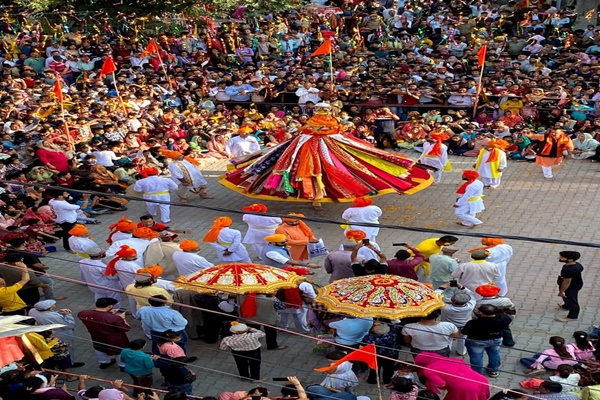
- 03 Sep 2025
In News:
The Mela Patt Festival, celebrated annually in Bhaderwah (Doda district, Jammu & Kashmir), is one of the most prominent cultural and religious events of the region. Rooted in Nag culture, the festival honors Lord Vasuki Nag, the presiding deity of Bhaderwah Valley, and reflects the valley’s rich legacy of syncretic traditions and communal harmony.
Historical Background
- The origins of the festival date back to the 16th century, when it was first celebrated by King Nag Pal during the era when Bhaderwah was known as Bhadarkashi.
- The festival commemorates the historic meeting between Mughal Emperor Akbar and King Nag Pal of Bhaderwah, highlighting its integration into broader Indian history.
- Over the centuries, the event has remained a symbol of unity, with no reported communal discord in its nearly 600-year-long history.
Rituals and Celebrations
- Timing: The festival is observed on Nag Panchami, seven days after the conclusion of the sacred Kailash Yatra.
- Cultural Expressions:
- The unique ‘Dikko Dance’ features participation from men and women across communities, symbolizing peace and pride.
- The ‘Dhakku Dance’, a traditional Dogra folk performance, is also showcased, underscoring its importance in the cultural mosaic of India.
- Inclusivity: Devotees and visitors from across Jammu & Kashmir, irrespective of caste or religion, gather to pay homage to Raja Nag Pal’s bravery and spiritual power.
Ethanol Blending in India
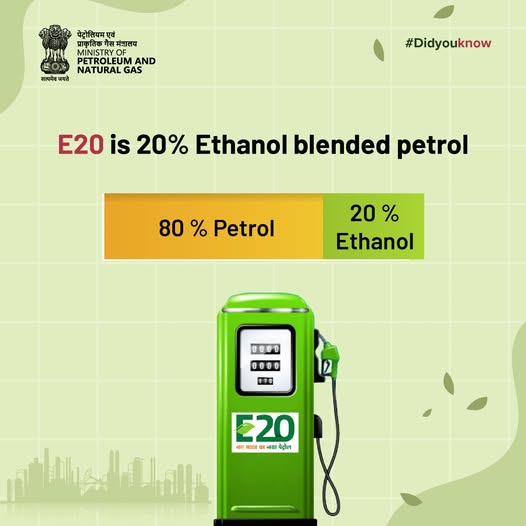
- 02 Sep 2025
In News:
India has been steadily advancing towards ethanol blending in petrol to reduce dependence on fossil fuels, cut carbon emissions, and boost the agricultural economy. Recently, debates have intensified after the nationwide rollout of E20 fuel (20% ethanol + 80% petrol) in July 2025—five years ahead of its initial 2030 target. Concerns were raised about its impact on older vehicles and consumer safety.
What is Ethanol Blending?
- Ethanol (C?H?OH): A renewable, biodegradable, and clean-burning fuel derived from biomass such as sugarcane molasses, rice, maize, barley, and wheat.
- Ethanol Blending: Mixing ethanol with petrol to increase oxygen content, leading to cleaner combustion, reduced greenhouse gas emissions, and lower crude oil imports.
- India’s Ethanol Blended Petrol (EBP) Programme began in 2003.
- Progress:
- 10% blending target achieved in 2021-22
- 12.06% in 2022-23
- 14.06% in 2023-24
- 20% blending achieved in July 2025, ahead of the 2030 deadline.
E20 Fuel and Automobile Industry Response
- E20 fuel is now being offered at petrol pumps, replacing earlier E5/E10 options.
- The Society of Indian Automobile Manufacturers (SIAM) confirmed that warranties will remain valid for older cars even if they were not originally designed for E20.
- Automakers are issuing dealer advisories on E20 usage in pre-2023 vehicles, when flex-fuel-compatible models began rolling out.
- The government has also announced guidelines for 27% ethanol blending, further deepening the transition.
Concerns and Challenges
- Fuel Efficiency & Engine Issues: Some vehicle owners have reported lower mileage and performance issues with E20.
- Warranty and Consumer Trust: Initial confusion over automaker responsibility raised fears of invalidated warranties.
- Agricultural Dependence: Heavy reliance on sugarcane and food crops raises concerns about the food vs. fuel debate and water stress.
- Supply Chain & Technology: Ethanol storage, transport, and blending infrastructure must scale up nationwide.
- Legal Challenge: A public interest litigation (PIL) on the impact of E20 is pending before the Supreme Court.
Benefits of Ethanol Blending
- Environmental: Cuts CO? emissions, improves urban air quality, and reduces vehicular pollution.
- Economic: Reduces crude oil imports (India imports ~85% of crude requirements), saving forex reserves.
- Agricultural: Provides a stable market for farmers through ethanol demand from crops like sugarcane, maize, and rice.
- Strategic: Contributes to India’s energy security and climate commitments under Paris Agreement & Net Zero 2070 goals.
Government Push and Future Roadmap
- Union Minister Nitin Gadkari has reiterated that higher ethanol blending is central to India’s green mobility transition.
- India is also exploring flex-fuel vehicles and second-generation (2G) ethanol derived from agricultural residues to address food security concerns.
- Targets:
- 27% blending roadmap under preparation.
- Expansion of ethanol production capacity through distilleries and 2G ethanol plants.
- Incentives for biofuel research, hybrid engines, and flex-fuel adoption.
Samudrayaan Project
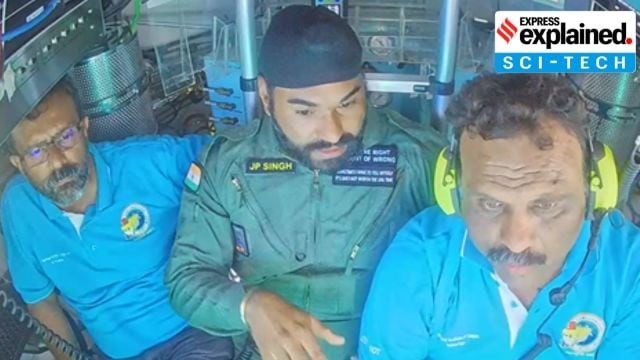
- 02 Sep 2025
In News:
India is set to join a select group of nations—US, Russia, China, Japan, and France—with the capability for manned deep-sea exploration through its ambitious Samudrayaan Project.
As part of preparations, two Indian aquanauts recently dived into the Atlantic Ocean aboard France’s submersible Nautile, gaining critical experiential insights.
The mission is a core component of the Deep Ocean Mission (2021–26), which supports India’s Blue Economy vision and aligns with the UN Decade of Ocean Science for Sustainable Development (2021–30).
Samudrayaan Project
- Objective: To send three humans in a manned submersible to a depth of 6,000 metres by 2027.
- Coordinating agency:National Institute of Ocean Technology (NIOT) under the Ministry of Earth Sciences (MoES), with technical support from ISRO’s Vikram Sarabhai Space Centre (VSSC).
- Budget: Part of the ?4,077 crore Deep Ocean Mission, approved by the Union Cabinet in 2021.
Key Aims
- Develop deep-sea mining technologies, robotics, and underwater vehicles.
- Conduct surveys for mineral deposits, particularly polymetallic nodules (rich in nickel, cobalt, manganese, rare earths).
- Explore deep-sea biodiversity and promote bio-prospecting.
- Establish an ocean climate change advisory service.
- Develop technologies for energy and freshwater from oceans.
- Build an advanced marine station for ocean biology and engineering.
Matsya-6000: The Crewed Submersible
- India’s first self-propelled manned submersible, designed like a fish.
- Built with a titanium alloy sphere (2.1 m diameter, 80 mm thickness) to withstand 600 times atmospheric pressure at 6,000 m depth and temperatures as low as -3°C.
- Capacity: 3 aquanauts for 12-hour missions, extendable to 96 hours in emergencies.
- Equipped with:
- Life-support systems (oxygen supply, CO? scrubbers, re-breather systems).
- Acoustic communication systems (since radio waves cannot penetrate deep water).
- Drop-weight escape mechanism for emergency ascent.
- Li-Po batteries and bio-vests for crew health monitoring.
Challenges in Deep-Sea Exploration
- Extreme Pressure: Precise fabrication (via electron beam welding) is required, as even a 0.2 mm deviation in sphere thickness can lead to collapse.
- Material Constraints: Titanium alloy of required grade is rare, and countries are reluctant to share reserves.
- Life Support: Ensuring safe oxygen levels, CO? absorption, and emergency backup systems.
- Communication: Acoustic telephones must overcome issues of temperature, salinity, and water depth.
- Human Endurance: Aquanauts face restricted mobility, limited nutrition, and confined conditions during 9–12 hour dives.
Deep Ocean Mission (DOM)
- Launched in 2021 for 5 years.
- Components:
- Deep Sea Mining & Manned Submersible: Samudrayaan and mineral exploration.
- Ocean Climate Change Advisory Services: Seasonal to decadal forecasting.
- Deep-Sea Biodiversity Studies: Exploration of flora, fauna, microbes.
- Deep Ocean Surveys: Mapping multi-metal sulphide and PMN sites.
- Energy & Freshwater: Research into Ocean Thermal Energy Conversion (OTEC) and desalination.
- Advanced Marine Station: Capacity building, R&D, and technology incubation.
Recent Progress
- Ocean Mineral Explorer (OMe 6000): Autonomous underwater vehicle deployed in 2022, surveying 14 sq. km in the Central Indian Ocean Basin at depths of 5,271 m, assessing PMN deposits and biodiversity.
- Research vessel SagarNidhi used for exploration and surveys.
Strategic and Economic Significance
- Blue Economy Growth: Supports industries like shipping, fishing, tourism, and biotechnology.
- Resource Security: Access to polymetallic nodules critical for electronics, renewable energy, and defense sectors.
- Geostrategic Edge: Enhances India’s role in the International Seabed Authority (ISA) regime.
- Scientific Advancement: Builds indigenous expertise in ocean engineering and extreme-environment technologies.
- Climate Preparedness: Generates critical data on ocean-climate interactions.
International Centre for Integrated Mountain Development
- 02 Sep 2025
In News:
The Hindu Kush Himalaya (HKH), spanning about 3,500 km across eight countries—Afghanistan, Bangladesh, Bhutan, China, India, Myanmar, Nepal, and Pakistan—is a global ecological and hydrological powerhouse.
Often termed the “Third Pole”, it holds the largest area of permanent ice cover outside the Arctic and Antarctic, feeding 10 major Asian river systems including the Indus, Ganga, and Brahmaputra. Despite its significance, a new report by the International Centre for Integrated Mountain Development (ICIMOD) warns that the region is tapping only 6.1% of its vast renewable energy potential, exposing vulnerabilities in the face of climate change.
About ICIMOD
- Established in 1983, headquartered in Kathmandu, Nepal.
- Intergovernmental body representing eight member countries of the HKH.
- Mission: Build and share knowledge to drive regional policy, investments, and climate-resilient development.
- Functions:
- Knowledge generation and sharing.
- Bridging science, policy, and practice.
- Providing a regional platform for sustainable mountain development.
Renewable Energy Potential in HKH
- Total hydropower potential: 882 GW.
- Of this, 635 GW lies in the trans-boundary rivers of HKH.
- Only 49% of hydropower potential is currently harnessed.
- Non-hydro potential: Nearly 3 Terawatts (solar & wind).
- Combined renewable energy potential in the region: >3.5 Terawatts.
- Current share in Total Primary Energy Supply (TPES): just 6.1%.
Country-wise Renewable Scenario
- Bhutan & Nepal: Generate 100% of electricity from renewables.
- India: Renewables contribute 23% of electricity generation.
- Others: Reliance on fossil fuels remains very high (Bangladesh 98%, Pakistan 76%, China 67%, Myanmar 51%).
- Traditional biomass use: Alarmingly high in rural areas—two-thirds of Nepal’s TPES, half of Myanmar’s, one-fourth of Bhutan’s and Pakistan’s—leading to severe air quality and health issues.
Climate Change & Energy Risks
The report highlights that climate variability is destabilising energy systems:
- Increased water variability and changing hydrological regimes reduce hydropower reliability.
- Glacial Lake Outburst Floods (GLOFs) and extreme weather events threaten nearly two-thirds of existing and planned hydropower projects.
- Infrastructure damage due to landslides, floods, and mega-floods is rising.
Policy Recommendations
- Integrate disaster risk reduction into hydropower and renewable energy projects.
- Explore “dams equivalents” like:
- Climate-resilient irrigation systems.
- On-farm water-efficient practices.
- Urban water storage solutions.
- Scaling up solar and wind power.
- Promote regional cooperation through platforms like SAARC Energy Centre and BIMSTEC Energy Ministers’ Conference.
- Attract international finance and private investment to overcome capital constraints.
- Encourage south-south collaboration, technology exchange, and joint research.
Significance for India
- India, a major HKH country, has both high renewable potential and high fossil fuel dependence.
- Regional clean energy cooperation can:
- Enhance energy security.
- Reduce import dependence.
- Create green jobs.
- Help achieve India’s Nationally Determined Contributions (NDCs) under the Paris Agreement.
MY Bharat Aapda Mitras
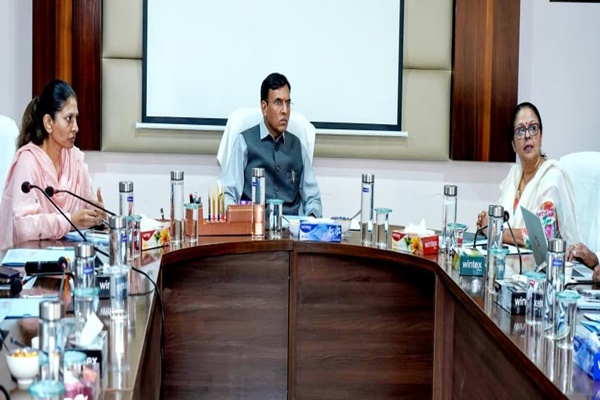
- 02 Sep 2025
In News:
- In the wake of devastating floods in Punjab and Himachal Pradesh, the Union Minister of Sports and Youth Affairs, Dr. Mansukh Mandaviya, announced the deployment of over a thousand trained MY Bharat Aapda Mitras to aid ongoing rescue and relief efforts.
- The initiative underscores the government’s emphasis on community-based disaster response, leveraging trained youth volunteers to strengthen resilience at the grassroots level.
MY Bharat: An Overview
- MY Bharat is an autonomous body established by the Department of Youth Affairs, Ministry of Youth Affairs and Sports.
- It operates as a phygital (physical + digital) platform, connecting and mobilising India’s youth (aged 15–29 years) through volunteering, mentorship, experiential learning, and industry networks.
- The platform seeks to provide equitable access to opportunities, enabling youth to contribute to Viksit Bharat (Developed India).
Aapda Mitra Programme under MY Bharat
- The Aapda Mitra programme, implemented by the National Disaster Management Authority (NDMA), provides structured, NDMA-certified disaster response training to youth volunteers.
- Training modules cover:
- Search and rescue operations
- First aid and medical response
- Crowd management
- Emergency coordination
- These volunteers act as first responders, ensuring the timely supply of food, medicines, and relief material to communities cut off by floods, landslides, or cloudbursts.
Current Mobilisation for Punjab and Himachal Pradesh
- Thousands of Aapda Mitras are being deployed across the flood-hit districts of Punjab and Himachal Pradesh.
- Volunteers will work in coordination with District Magistrates, district administrations, and local authorities to ensure swift rescue and relief.
- Their role will be crucial in reaching remote villages, where connectivity has been disrupted due to floods and landslides.
Significance
- Strengthens community-led disaster resilience.
- Bridges the gap between formal institutions (NDMA, administration) and citizen response efforts.
- Provides a youth-centric model of disaster preparedness, integrating skill development with national service.
- Demonstrates the whole-of-society approach to disaster management by combining government resources, institutional training, and grassroots volunteerism.
Mission Mausam
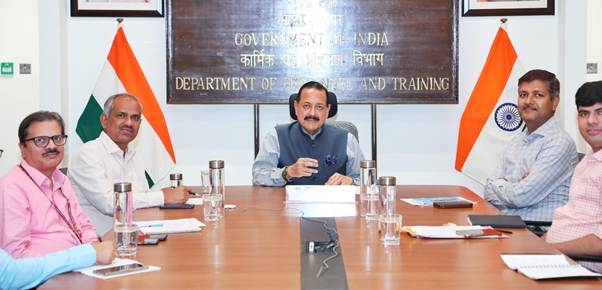
- 02 Sep 2025
In News:
The increasing frequency of extreme weather events—cloudbursts, flash floods, and landslides—has underlined the urgent need for robust forecasting and disaster management mechanisms in India’s Himalayan region.
In this context, the Indian Meteorological Department (IMD), under the Ministry of Earth Sciences (MoES), is set to install four additional radars in Jammu & Kashmir (J&K) as part of Mission Mausam (2024). This development coincides with intensified relief and rehabilitation efforts following unprecedented rainfall and floods in August–September 2025.
Mission Mausam: An Overview
- Launched: 2024 by the Ministry of Earth Sciences.
- Implementing Agencies: IMD, National Centre for Medium-Range Weather Forecasting (NCMRWF), and Indian Institute of Tropical Meteorology (IITM).
- Objectives:
- Enhance India’s forecasting capability across short, medium, extended, and seasonal scales.
- Develop high-resolution models for improved accuracy in monsoon prediction.
- Strengthen observational networks with radars, satellites, automated weather stations.
- Provide sector-specific advisories for agriculture, water resources, health, energy, and disaster management.
- Build capacity through national and international collaborations.
Significance: It represents a transformative milestone in India’s climate resilience strategy, supporting sustainable development, while safeguarding lives, livelihoods, and infrastructure.
Relief and Rehabilitation Measures in J&K (2025)
Following the cloudbursts and floods, the Centre and UT administration launched coordinated relief measures:
- Immediate Relief: Supply of rations, medicines, water filters, and medical kits. Additional consignments dispatched from MP funds to supplement government aid.
- Community Role: Civil society and local bikers acted as first responders, showcasing a whole-of-society approach.
Broader Relevance for Disaster Management
- Policy Linkages: Aligned with the Disaster Management Act, 2005 and the Sendai Framework (2015–2030), emphasizing early warning systems and community resilience.
- Socio-Economic Impact: Strengthening forecasting reduces agricultural losses, protects infrastructure, and prevents human casualties.
- Strategic Significance: Enhances preparedness in the fragile Himalayan ecosystem, prone to climate-induced disasters.
India Develops Rare Reference Material for Enhanced Anti-Doping Testing

- 01 Sep 2025
In News:
- In a landmark achievement, India has successfully developed a rare and high-purity Reference Material (RM) – Methandienone Long-Term Metabolite (LTM) for advanced anti-doping testing in sports.
- This development was led by the National Institute of Pharmaceutical Education and Research (NIPER), Guwahati in collaboration with the National Dope Testing Laboratory (NDTL), New Delhi, under the Department of Pharmaceuticals.
What are Reference Materials (RMs)?
- Highly purified, scientifically characterized forms of drug substances or their metabolites.
- Essential for accurate analytical testing and doping control.
- Crucial for detecting over 450 prohibited substances listed by the World Anti-Doping Agency (WADA).
- Globally scarce – only 4–5 manufacturers worldwide produce such materials, making them expensive and difficult to access.
Methandienone Long-Term Metabolite (LTM)
- A specialized RM developed for tracing misuse of anabolic steroid Methandienone.
- LTMs are metabolites that remain detectable in urine long after substance use – enabling identification of athletes even months or years after doping.
- Enhances detection sensitivity and increases the number of positive tests, thus acting as a deterrent.
- Not commercially available globally, making India’s contribution unique.
Significance for India and the World
- Strengthening Anti-Doping Efforts: Supports WADA’s global mission of transparency, fairness, and integrity in sports.
- Protecting Clean Athletes: Shields honest athletes while discouraging performance-enhancing drug misuse.
- Global Contribution: Methandienone LTM can be shared with 30 WADA-accredited laboratories worldwide, positioning India as a global leader in doping science.
- Self-Reliance in Sports Science: Since 2020, NIPER Guwahati has synthesized 12 out of 22 identified RMs for NDTL, reducing dependency on costly imports.
National Dope Testing Laboratory (NDTL) – Key Facts
- Premier analytical testing and research organization under Government of India.
- Only laboratory in India accredited for human sports dope testing.
- Accredited by:
- National Accreditation Board for Testing & Calibration Laboratories (NABL)
- World Anti-Doping Agency (WADA)
- Plays a central role in ensuring India’s compliance with international anti-doping standards.
Strait of Malacca
- 01 Sep 2025
In News:
India and Singapore have recently elevated their Comprehensive Strategic Partnership (CSP) by signing multiple agreements across defence, space, trade, skills, and sustainability.
A key highlight was Singapore’s support for India’s interest in joint patrolling of the Malacca Strait, one of the world’s most critical maritime chokepoints. This development has both bilateral and regional strategic implications.
The Malacca Strait: Geography and Importance
- Location: Between Sumatra (Indonesia) and Peninsular Malaysia–Thailand, linking the Andaman Sea (Indian Ocean) with the South China Sea (Pacific Ocean).
- Significance:
- One of the busiest shipping lanes globally, handling ~60% of India’s seaborne trade and nearly all its LNG imports.
- A vital energy artery for China, making it a strategic vulnerability (“Malacca Dilemma”).
- Historically named after the Malacca Sultanate (1400–1511).
Malacca Straits Patrols (MSP)
- Launched in 2004 by Indonesia, Malaysia, and Singapore; Thailand joined later.
- Aimed at curbing piracy, terrorism, and trafficking.
- Three coordinated layers:
- Sea Patrols: Regular joint naval patrolling.
- Eyes-in-the-Sky: Combined aerial surveillance.
- Intelligence Exchange Group: Real-time information sharing.
- India’s interest in joining the MSP reflects its commitment to freedom of navigation, regional stability, and maritime security.
India–Singapore Bilateral Cooperation (2025 Roadmap)
During PM Narendra Modi’s meeting with Singapore PM Lawrence Wong (2025), a roadmap was adopted identifying eight priority areas:
- Trade and Economy
- Skills Development – MoU to establish a National Centre of Excellence for Advanced Manufacturing Skilling in Chennai.
- Digitalisation& AI
- Sustainability – MoU for a Green and Digital Shipping Corridor and collaboration on green maritime fuel.
- Connectivity– Deepening maritime links.
- Healthcare & Medicine
- People-to-People and Cultural Exchanges
- Defence and Security – including space collaboration.
Key Agreements
- Space Cooperation: MoU between IN-SPACe (India) and Singapore’s Office for Space Technology and Industry for commercial and research linkages.
- Green Shipping Corridor: To promote sustainable maritime trade.
- Skill Development: Centre of Excellence for advanced manufacturing skilling.
Strategic Implications
- For India:
- Securing energy and trade routes through the Strait.
- Expanding its role in regional security architecture.
- Strengthening defence and space cooperation with ASEAN.
- For Singapore:
- Reinforces its position as a hub for maritime and digital connectivity.
- Gains from India’s manufacturing, space, and green energy initiatives.
- Regional Balance:
- Counters China’s strategic dominance in the South China Sea.
- Enhances multilateral security frameworks in the Indo-Pacific.
Vaquita Porpoise
- 01 Sep 2025
In News:
- The vaquita porpoise (Phocoena sinus), the world’s rarest marine mammal, is on the brink of extinction with only about 10 individuals remaining in the northern Gulf of California (Sea of Cortez), Mexico.
- Despite global attention, weak enforcement of wildlife protection laws in Mexico and the persistence of illegal fishing practices have accelerated the species’ decline.
- A recent report by the North American Environmental Commission under the United States-Mexico-Canada Agreement (USMCA) has held Mexico accountable for failing to safeguard the vaquita.
The Vaquita: An Overview
- Discovery: Identified in 1958.
- Classification: Smallest member of the cetacean family (whales, dolphins, porpoises), diverged from dolphins ~15 million years ago.
- Habitat: Restricted to shallow waters (up to 50 m deep) in the Upper Gulf of California.
- Appearance: Distinct dark eye rings, lip patches, and a large dorsal fin aiding heat release.
- Behavior: Solitary or small-group species, shy, avoids boats.
- Status:
- IUCN Red List: Critically Endangered.
- CITES: Appendix I (strict trade regulation).
Causes of Decline
- Gillnet Bycatch:
- The primary threat is entanglement in illegal gillnets set for totoaba fish, whose swim bladder fetches high prices in East Asia.
- Despite Mexico’s ban on gillnets since 2020, on-ground reports reveal continued use.
- Weak Enforcement:
- Only 10 of the 850 promised satellite trackers fitted on fishing vessels.
- Fishermen bypass restrictions by sending illegal catch to other regions.
- Institutional Failures:
- Lack of adequate vessel inspections, monitoring, and promotion of alternative fishing gear.
- Mexico’s enforcement claims contradicted by eyewitness accounts and NGO reports.
International Pressure and USMCA Mechanisms
- The USMCA Environmental Commission report has urged the United States to hold Mexico accountable.
- Under USMCA, the US can:
- Press for stricter compliance through consultations.
- Escalate disputes to a panel stage.
- Impose import penalties if Mexico fails to enforce the ban in vaquita habitats.
Global AI Governance
- 01 Sep 2025
In News:
Artificial Intelligence (AI) is reshaping economies, governance, and societies at an unprecedented pace. While AI offers transformative opportunities in healthcare, education, mobility, and governance, it also poses challenges of bias, misinformation, data privacy, and ethical use. Recognizing the urgency of global cooperation, the United Nations General Assembly (UNGA) has launched two institutional mechanisms to advance inclusive and responsible AI governance.
UNGA’s Two New Initiatives on AI Governance (2025)
- Independent International Scientific Panel on AI
- Serves as a bridge between research and policymaking.
- Provides independent scientific assessments of emerging AI risks and opportunities.
- Annual reports to be presented at the Global Dialogue sessions in 2026 (Geneva) and 2027 (New York).
- Global Dialogue on AI Governance
- An inclusive UN platform for member states and stakeholders.
- Facilitates deliberation on critical AI issues: ethical use, regulation, global standards, and equitable access.
- Complements the Global Digital Compact, adopted as part of the Pact for the Future (2024).
India’s AI Governance Landscape
- Legal Framework:
- No dedicated AI law. AI is currently governed under:
- IT Act, 2000 – cybercrimes, intermediary liability.
- Digital Personal Data Protection Act, 2023 – data privacy.
- IPR laws – regulation of AI-generated works.
- No dedicated AI law. AI is currently governed under:
- Policy Initiatives:
- NITI Aayog’s National Strategy on AI (2018): Focus on healthcare, agriculture, education, mobility, smart cities.
- Principles for Responsible AI (2021): Emphasize safety, transparency, fairness, accountability, and inclusivity.
- Global Engagement:
- Hosted the GPAI Summit (2023).
- Co-chaired the AI Action Summit with France (2025).
- Set to host the AI Impact Summit (2026).
- Actively shaping norms of ethical AI use in the Global South.
PM SVANidhi 2.0
- 01 Sep 2025
In News:
The Prime Minister Street Vendor’s AtmaNirbhar Nidhi (PM SVANidhi) Scheme, launched on 1st June 2020 amidst the COVID-19 crisis, has emerged as a landmark initiative for supporting urban street vendors by providing collateral-free working capital loans, promoting digital inclusion, and enabling social security access.
In August 2025, the Union Cabinet approved the restructuring and extension of the scheme till 31st March 2030, with an enhanced outlay of ?7,332 crore to benefit 1.15 crore beneficiaries, including 50 lakh new entrants.
Key Features of the Restructured Scheme
- Enhanced Loan Tranches
- 1st tranche: ?15,000 (earlier ?10,000)
- 2nd tranche: ?25,000 (earlier ?20,000)
- 3rd tranche: ?50,000 (unchanged)
- UPI-linked RuPay Credit Card
- Available for vendors who have repaid the second loan.
- Ensures instant credit access for business and personal needs.
- Digital Incentives
- Cashback up to ?1,600 on digital transactions.
- Promotes financial literacy and digital adoption.
- Expanded Coverage
- From statutory towns to census towns, peri-urban areas, in a phased manner.
- Capacity Building & Convergence
- Training in entrepreneurship, financial literacy, and digital skills.
- Food safety & hygiene certification for street food vendors in partnership with FSSAI.
‘SVANidhi se Samriddhi’ Component
- Ensures saturation coverage of welfare schemes for vendors’ families.
- Monthly Lok Kalyan Melas to connect beneficiaries with schemes like PM Suraksha Bima Yojana, PM Jeevan Jyoti Bima Yojana, Ayushman Bharat, and PM Jan Dhan Yojana.
Achievements Till Date (as of July 2025)
- 96 lakh loans disbursed worth ?13,797 crore to 68 lakh vendors.
- 47 lakh digitally active beneficiaries with over 557 crore transactions worth ?6.09 lakh crore.
- ?241 crore cashback earned by vendors.
- 46 lakh beneficiaries profiled across 3,564 ULBs, leading to 1.38 crore scheme sanctions.
- Recognitions:
- PM’s Award for Excellence in Public Administration (2023) for Innovation.
- Silver Award (2022) for Government Process Re-engineering in Digital Transformation.
Grid Connected Rooftop Solar Scheme

- 31 Aug 2025
In News:
The Grid Connected Rooftop Solar Scheme was launched by the Government of India to promote clean energy, reduce dependence on fossil fuels such as coal and petroleum, and control pollution. By harnessing solar power through rooftop installations, the scheme provides households, institutions, and commercial entities with access to low-cost, sustainable electricity, while contributing to India’s climate goals.
Solar Rooftop System
- Definition: Installation of solar photovoltaic (SPV) panels on rooftops of residential, commercial, industrial, and institutional buildings.
- Types:
- With Battery Storage – Stores excess solar energy for later use.
- Grid Connected (SPV System) – Converts DC power from solar panels into AC power, which is used for captive consumption and surplus energy is fed into the grid. During low solar generation, the grid compensates for the shortfall.
Objectives of the Programme
- Achieve 40,000 MW capacity by 2022 (target set under the National Solar Mission).
- Central government allocation: ?11,814 crore.
- Phase II incentives:
- Up to 40% subsidy for systems up to 3 kW.
- 20% subsidy for systems between 3–10 kW.
- Increase the role of Distribution Companies (DISCOMs) in promotion and implementation.
Advantages of Grid-Connected Rooftop Solar
- Economic:
- Reduces consumer electricity bills.
- No additional land requirement as panels are roof-mounted.
- Short gestation period compared to large-scale power projects.
- Technical:
- Minimises transmission and distribution losses.
- Reduces congestion and improves voltage at tail ends of distribution lines.
- Environmental:
- Cuts carbon emissions.
- Strengthens long-term energy and environmental security.
Implementation & Nodal Ministry
- Implemented by the Ministry of New and Renewable Energy (MNRE).
- MNRE promotes research, innovation, and global collaboration in renewable energy sectors (solar, wind, hydropower, and biogas).
- Broader goals include:
- Increasing renewable energy share in India’s energy mix.
- Reducing dependence on oil-based energy.
- Supporting clean cooking, heating, and energy equity across regions.
Sundarbans Tiger Reserve
- 31 Aug 2025
In News:
The Sundarbans Tiger Reserve (STR) in West Bengal has become India’s second-largest tiger reserve after the National Board for Wildlife (NBWL) approved the state government’s proposal to expand its area by 1,044.68 sq km. With this addition, STR now spans 3,629.57 sq km, moving up from the seventh to the second position among the country’s 58 tiger reserves, next only to Andhra Pradesh’s Nagarjunasagar-Srisailam Tiger Reserve (3,727.82 sq km).
Expansion Details
- The newly added area includes three tiger-bearing forest ranges of South 24 Parganas district: Matla, Raidighi, and Ramganga.
- The expansion brings all tiger-bearing mangrove forests under the unified management of STR, ensuring uniform application of National Tiger Conservation Authority (NTCA) guidelines.
- The proposal was first conceived nearly two decades ago, revived in 2022–23, and formally cleared by NBWL in August 2025 after approvals from the State Wildlife Board and NTCA.
Location and Ecological Importance
- STR is located in the coastal districts of West Bengal, at the southernmost tip of the Gangetic delta, bordering the Bay of Bengal.
- It is part of the world’s largest delta, formed by the Ganga and Brahmaputra rivers.
- STR is unique as it is the only mangrove habitat in the world (shared with Bangladesh) that supports a significant tiger population.
- It also holds the status of a National Park and a Biosphere Reserve.
Boundaries
- East: International boundary with Bangladesh (rivers Harinbhanga, Raimangal, Kalindi).
- South: Bay of Bengal.
- West: River Matla (boundary with South 24-Parganas Forest Division).
- North-West: Rivers Bidya and Gomdi.
Biodiversity
- Flora: True mangroves, mangrove associates, halophytic herbs, shrubs, weeds, epiphytes, and parasitic plants.
- Fauna: Bengal tiger, estuarine crocodile, fishing cat, Gangetic and Irrawaddy dolphins, king cobra, water monitor lizard, and numerous bird and fish species.
Conservation and Development Implications
- Estimated tiger population: ~101 (80 within STR, 21 in adjoining forests). The number is expected to increase with better management.
- Expansion is expected to enhance:
- Central funding for tiger conservation.
- Tourism potential and local economic benefits.
- Infrastructure and staff capacity within the reserve.
- Conservationists welcome the move as long overdue, while some forest officials caution about manpower shortages (currently only 40% of sanctioned strength).
Support for Marginalized Individual for Livelihood and Enterprise (SMILE) Scheme

- 31 Aug 2025
In News:
The Government of India has undertaken multiple initiatives for the welfare and empowerment of marginalized groups, including the transgender community. A significant step in this direction is the launch of a 15-day Entrepreneurship Development Programme (EDP) under the Support for Marginalized Individual for Livelihood and Enterprise (SMILE) scheme.
About the Programme
- Inaugurated at Garima Greh, a shelter home for transgender persons in Delhi.
- Organized by the Department of Social Justice & Empowerment (DoSJE) and implemented by the National Institute of Entrepreneurship and Small Business Development (NIESBUD).
- Initially, 25 transgender candidates will be trained, with a target of 18 programmes nationwide on a pilot basis, benefitting around 1800 persons.
- Training includes:
- Business opportunity identification and market survey
- Knowledge of the entrepreneurship ecosystem
- Financial aid support schemes and banking procedures
- Entrepreneurial accounting, taxation, and regulatory compliances
- Exposure visits (e.g., incubation centres of NSIC)
- Trainees will prepare business plans and be linked with banks for financial support. Post-training, 6 months of handholding support will ensure sustainability of enterprises.
Financial Inclusion Measures
On the request of DoSJE, the Reserve Bank of India (RBI) has included the transgender community in the Priority Sector Lending (PSL) category. This ensures easier access to credit and financial services for entrepreneurial ventures.
The SMILE Scheme – Key Features
The SMILE scheme is a Central Sector Scheme implemented by the Ministry of Social Justice & Empowerment. It has two components:
- Comprehensive Rehabilitation for Welfare of Transgender Persons
- Comprehensive Rehabilitation of Persons Engaged in Begging
Provisions under SMILE
- Education: Scholarships for transgender students (Class IX to Post-Graduation).
- Skill Development & Livelihood: Training support under PM-DAKSH.
- Healthcare: Composite medical support through convergence with PM-JAY, including gender-reaffirmation surgeries in selected hospitals.
- Housing: Garima Greh shelters providing food, clothing, skill training, recreational and medical support.
- Protection & Legal Support: Establishment of Transgender Protection Cells in each state for timely investigation and prosecution of offences.
- Information Support: National Portal & Helpline for grievance redressal and information dissemination.
Significance
- Promotes economic empowerment and self-reliance of transgender persons.
- Ensures financial inclusion through PSL categorization.
- Strengthens India’s commitment towards an inclusive “Viksit Bharat” by addressing social and economic vulnerabilities of marginalized groups.
Drake Passage
- 31 Aug 2025
In News:
A powerful earthquake of magnitude 7.5 struck the Drake Passage, the stretch of ocean between South America’s Cape Horn and the South Shetland Islands of Antarctica.
About Drake Passage
- Location: Lies between Cape Horn (South America) and the South Shetland Islands (Antarctica).
- Geography: A deep and wide waterway connecting the southwestern Atlantic and southeastern Pacific Oceans; also the narrowest stretch of the Southern Ocean, spanning nearly 800 km between South America and the West Antarctic Peninsula.
- Climatic Role: Marks a climatic transition zone, separating the cool, humid subpolar conditions of Tierra del Fuego from the frigid polar climate of Antarctica.
- Navigation: Considered among the roughest seas in the world due to the collision of cold southern currents and warmer northern waters, which create strong eddies, compounded by powerful westerly winds around Cape Horn.
- Historical Importance: Before the opening of the Panama Canal, it served as a vital maritime trade route in the 19th and early 20th centuries.
- Naming: The passage is named after Sir Francis Drake, the first Englishman to circumnavigate the globe.
Lipulekh Pass

- 31 Aug 2025
In News:
India has rejected Nepal’s claims over Lipulekh Pass after the resumption of India–China trade through this border point. The issue has once again brought the strategic and political importance of the pass into focus.
Location & Geography
- Situated in the Kumaon region of Uttarakhand, near the trijunction of India, Nepal, and China.
- Altitude: ~5,334 metres (17,500 feet).
- Serves as a gateway to the higher Himalayan ranges and the Tibet Autonomous Region of China.
Historical & Trade Importance
- A traditional trade route connecting India with Tibet for centuries.
- In 1992, Lipulekh became the first Indian border post opened for official trade with China.
- Later followed by Shipki La (Himachal Pradesh, 1994) and Nathu La (Sikkim, 2006).
Religious Significance
- Forms an integral part of the Kailash Mansarovar Yatra, an important Hindu pilgrimage route to Mount Kailash and Lake Mansarovar in Tibet.
Strategic Significance
- Its geopolitical location near the trijunction makes it strategically vital for India’s border security and connectivity with Tibet.
- The dispute with Nepal underscores its sensitive nature in regional geopolitics.
Blue Carbon

- 30 Aug 2025
In News:
Seaweed farming has emerged as a potential Blue Carbon strategy, yet empirical estimates of carbon burial from such farms remain lacking in the literature.
What is Blue Carbon?
- Blue Carbon refers to organic carbon captured and stored by ocean-based vegetated ecosystems such as mangroves, saltmarshes, and seagrass meadows.
- The term “blue” highlights its association with aquatic ecosystems.
- Most blue carbon comes from carbon dioxide dissolved directly into the ocean. Smaller amounts are stored in:
- Underwater sediments and soils
- Coastal vegetation
- Organic molecules (DNA, proteins, etc.)
- Marine organisms (phytoplankton, whales, etc.)
- Despite covering just 2% of the ocean surface, these ecosystems account for 50% of total oceanic carbon absorption, making them vital in global climate mitigation efforts.
Seaweed Farming as a Blue Carbon Strategy
- Emerging Role: Seaweed cultivation has been identified as a potential Blue Carbon pathway, though empirical evidence of its carbon burial capacity has been limited until recently.
- Global Study: An analysis of 20 seaweed farms worldwide, aged between 2 and 300 years and ranging from 1 to 15,000 hectares, provides new insights.
- Findings:
- Sediment organic carbon stocks increased with farm age, reaching 140 tC ha?¹ in the oldest farm.
- Average burial rates: 1.87 ± 0.73 tCO?e ha?¹ yr?¹ in farm sediments, nearly double that of nearby reference sediments.
- Excess CO?e burial attributable to seaweed farming: 1.06 ± 0.74 tCO?e ha?¹ yr?¹.
- Conclusion: Seaweed farms in depositional environments act as effective carbon sinks, with burial rates at the lower end of traditional Blue Carbon habitats but increasing significantly with farm maturity.
Significance
- Reinforces the role of marine ecosystems in carbon sequestration.
- Highlights seaweed farming as a scalable, nature-based climate solution alongside mangroves, saltmarshes, and seagrasses.
- Provides a scientific basis for integrating seaweed aquaculture into Blue Carbon policies and climate strategies.
Charge-Coupled Device

- 30 Aug 2025
In News:
A Charge-Coupled Device (CCD) is an innovative electronic component that transformed imaging technology and left a lasting impact across multiple disciplines.
What is a CCD?
- A CCD is a technology that converts light into electrical signals using an arrangement of capacitors, which transfer stored charges sequentially.
- It is built as an integrated circuit containing a grid of tiny picture elements, or pixels.
- Each pixel functions as a miniature light sensor that captures incoming photons and converts them into electrical charges.
- These charges are then shifted across the device pixel by pixel until they reach a readout register, where they are processed into a digital image.
Working Principle
- Based on the photoelectric effect, where incident light generates electron-hole pairs in a semiconductor.
- When photons hit a pixel, they dislodge electrons, creating an electric charge proportional to the light intensity at that point.
- Each pixel acts like a capacitor, storing the accumulated electrons.
- By applying a controlled voltage to electrodes over the pixels, the stored charges are moved step by step across the array—similar to passing buckets of water along a line.
- Once charges reach the output stage, they are converted into voltage signals, amplified, and digitized to form a high-resolution digital image.
- This sequential transfer mechanism is what gives the device its name—charge-coupled.
Applications
- Everyday Use:
- Revolutionized digital photography by replacing traditional film.
- Widely used in CCTV cameras, offering high-quality surveillance in banks, malls, hospitals, and other sensitive locations.
- Medical Field:
- Integral to diagnostic imaging such as X-rays, CT scans, and endoscopy.
- Also employed in microscopes, spectrometers, and particle detectors, enabling detailed scientific analysis.
- Astronomy:CCD-equipped telescopes capture faint and distant celestial objects with greater sensitivity and accuracy than old photographic plates, driving advances in space observation.
CCDs remain one of the most influential inventions in modern imaging, bridging science, medicine, security, and astronomy.
Exercise Samanvay Shakti

- 30 Aug 2025
In News:
The Indian Army, in collaboration with the state governments of Assam and Manipur, inaugurated Exercise Samanvay Shakti 2025 at Laipuli in Tinsukia district, Assam. The initiative is a Military–Civil Integration Exercise designed to build cooperation, cohesion, and mutual understanding among various stakeholder
Aim & Objectives
- Enhance synergy between the armed forces, government departments, and civil institutions.
- Develop a unified and coordinated approach to address the region’s complex challenges.
- Improve preparedness through refined SOPs, effective communication channels, and practical rehearsals.
- Strengthen the bond of trust between local communities and institutions.
- Promote nation-building, development, and national integration.
Participation
The inaugural session saw participation from:
- Indian Army and Indian Air Force.
- State administration, Police, and Intelligence Agencies.
- NDRF, SDRF, BRO, GREF, Medical officials, and Railways.
- Educational institutions and security teams from OIL India, IOCL, Coal India, along with local media representatives.
Key Features
- Location & Duration: Conducted in Assam and a parallel 10-day exercise in Manipur (20–30 August 2025).
- Thematic Focus in Manipur: Disaster management, healthcare, education, public works, forest initiatives, narcotics control, irrigation, road safety, employment in armed forces, sports promotion, police–Army–paramilitary coordination, and infrastructure development under Operation Sadbhavna.
Significance
- Provides a platform for collaboration between civil authorities and the military.
- Enhances regional security preparedness while addressing developmental needs.
- Encourages community participation in governance and security-related initiatives.
- Contributes towards integrated development and inclusive nation-building in the Northeast.
Sci-Hub Ban and the ‘One Nation, One Subscription’ Scheme

- 30 Aug 2025
In News:
The Delhi High Court has ordered a ban on Sci-Hub and its mirror websites after global publishing houses filed a copyright infringement case. This decision has reignited the debate on access to academic literature in India and highlighted the relevance of the government’s One Nation, One Subscription (ONOS) initiative
About Sci-Hub
- Founded: 2011 by Alexandra Elbakyan.
- Nature: A free digital repository providing millions of research articles.
- Function: Circumvents paywalls of academic journals, allowing unrestricted access without subscriptions.
- Popularity: Widely used by students, independent researchers, and scholars, particularly in developing nations.
The Sci-Hub Case
- Litigation: Publishing giants Elsevier, Wiley, and the American Chemical Society (ACS) filed a copyright case against Sci-Hub.
- Court Ruling: The Delhi High Court found Alexandra Elbakyan guilty of contempt for violating earlier commitments.
- Directive: Internet Service Providers (ISPs) were instructed to block Sci-Hub and related mirror portals.
- Implication: While the ruling reinforced intellectual property rights, it left unanswered the critical issue of affordable access to scholarly resources in India.
One Nation, One Subscription (ONOS) Scheme
- Launch: 2024.
- Funding: ?6,000 crore allocated for the first phase (2023–26).
- Approach: Centralized negotiations with 30 publishing houses to provide access to nearly 13,000 journals.
- Coverage:
- Phase I: Public universities and research institutions.
- Phase II: Private colleges and institutes.
- Objective: To provide equitable, legal, and affordable access to global research material, reducing dependence on piracy platforms like Sci-Hub.
Project Aarohan

- 30 Aug 2025
In News:
The National Highways Authority of India (NHAI), in collaboration with Vertis Infrastructure Trust, has launched Project Aarohan, a nationwide scholarship and mentorship program aimed at supporting the educational aspirations of the children of toll plaza employees, particularly those from economically weaker sections (EWS) and disadvantaged communities.
Key Objectives
- Remove financial barriers to education.
- Ensure equal access to quality education for children of toll plaza staff.
- Bridge socio-economic divides while nurturing talent among first-generation learners, girls, and students from EWS, SC, ST, OBC, and minority groups.
- Prepare students for higher education, employment, and entrepreneurship through holistic guidance.
Features of Project Aarohan
- Coverage: 500 students from Class 11 to the final year of graduation.
- Scholarships: Each selected student will receive ?12,000 annually (FY 2025–26).
- Higher Studies Support: 50 bright students aspiring for postgraduate and higher studies will get ?50,000 each.
- Beyond Finance: Mentorship, skill-building workshops, career guidance, and structured progress tracking to foster holistic growth.
- Fund Allocation: ?1 crore for the first phase (July 2025–March 2026).
- Application Process: Through an online portal, requiring academic records, income proof, caste certificate, ID proof, etc., with a transparent selection and renewal mechanism.
Super Garuda Shield 2025

- 29 Aug 2025
In News:
Indonesia, in collaboration with the United States and allied nations, has launched the annual multinational military exercise “Super Garuda Shield 2025”. Initiated in 2009 as a bilateral drill between U.S. and Indonesian forces, the exercise has expanded significantly since 2022 to include multiple Indo-Pacific and Western partners.
Features of Super Garuda Shield 2025
- Organisers: Indonesian National Armed Forces and the U.S. Indo-Pacific Command.
- Participants: Core members — Indonesia and the U.S.; Expanded members — Australia, Japan, Singapore, UK, France, Canada, Germany, Netherlands, New Zealand, Brazil, and South Korea.
- Scale: Around 6,500 troops.
- Duration & Location: 11 days, conducted in Jakarta and on Sumatra island.
- Activities: Joint combat training, interoperability drills across land, air, and maritime domains, and a combined live-fire exercise.
- Objectives:
- Enhance interoperability and combat readiness.
- Strengthen regional security cooperation.
- Uphold sovereignty, territorial integrity, and collective deterrence.
Strategic Context
The Indo-Pacific is witnessing rising tensions due to China’s growing military assertiveness, especially in the South China Sea. Indonesia has expressed concern about Chinese encroachment in its Exclusive Economic Zone (EEZ), though it continues to maintain positive economic relations with Beijing.
The U.S., meanwhile, is reinforcing an “arc of alliances” to reassure partners against coercion and status quo changes by force. Washington views the expanded Garuda Shield as a demonstration of collective resolve to uphold sovereignty and deter aggression.
China, however, has criticised the exercise, calling it an attempt to build an “Asian NATO” to contain its influence.
Indonesia’s Diplomatic Balancing
- Indonesia follows a dual-track diplomacy — avoiding overt confrontation with China while diversifying its defence partnerships with the U.S. and Western powers.
- This includes arms purchases from the U.S. and France and enhancing interoperability with multiple militaries.
- Scholars note that Indonesia’s refusal to choose sides outright reflects its strategy of defence diversification without formal alignment.
- Such an approach is seen as a key asset for Jakarta in a region marked by great power rivalry.
Significance
- For Regional Security: Strengthens multinational defence cooperation, collective deterrence, and stability in the Indo-Pacific.
- For Indonesia: Demonstrates its role as a pivotal state capable of balancing economic ties with China while engaging in security cooperation with the West.
- For the World Order: Reflects the growing salience of multilateral military exercises in managing great power competition and reinforcing the principles of sovereignty and territorial integrity.
India Launches First Veterinary Blood Transfusion Guidelines 2025

- 29 Aug 2025
In News:
A tragic incident in Pune has highlighted regulatory gaps in complex medical procedures. A woman, who donated part of her liver to her husband, died shortly after he succumbed to complications following a transplant surgery at a private hospital.
The Maharashtra Health Department has issued a notice to the hospital, underscoring the critical need for robust patient safety mechanisms, accountability, and monitoring of high-risk medical interventions such as organ transplants.
This incident reiterates the importance of strict compliance with Transplantation of Human Organs and Tissues Act (THOTA), 1994, ensuring informed consent, donor safety, quality control, and post-operative care. It also brings attention to the ethical dimensions of living donor transplants, where both donor and recipient are at significant medical risk. Strengthening regulatory oversight, grievance redressal mechanisms, and transparency in medical procedures is vital for safeguarding trust in India’s healthcare system.
Veterinary Healthcare Regulation: First National Guidelines
In a landmark step for animal health, the Department of Animal Husbandry and Dairying (DAHD), Government of India has released the first comprehensive national guidelines for veterinary blood transfusion services (2025). Until now, most transfusions in veterinary practice were conducted in emergencies without standardized norms, creating risks for animals as well as humans due to possible zoonotic disease transmission.
Key Features of the Guidelines:
- Scientific Protocols: Blood typing, cross-matching, and mandatory donor screening to prevent transfusion reactions.
- Donor Criteria: Health checks, vaccination requirements, and a Donor Rights Charter encouraging voluntary donation.
- Veterinary Blood Banks: State-regulated facilities with biosafety-compliant infrastructure.
- One Health Integration: Addressing zoonotic disease risks by linking animal and human health surveillance.
- Digital Network: Real-time inventory tracking, emergency helplines, and registries for donor–recipient matching.
- Capacity Building: Training modules for veterinary professionals and students.
- Future Innovations: Mobile blood collection units and rare blood-type preservation.
Significance
Both developments underline the evolving landscape of healthcare governance in India. While the Pune case exposes ethical and regulatory challenges in human medicine, the veterinary guidelines represent a proactive, systematised approach to animal welfare, biosafety, and public health.
These events also reflect the growing importance of One Health — the integrated management of human, animal, and environmental health — as India strengthens its healthcare regulations in response to rising public expectations, ethical concerns, and global standards.
India’s Fossil Heritage
- 29 Aug 2025
In News:
India’s fossil heritage, spanning hundreds of millions of years, holds clues to the evolution of plants, dinosaurs, mammals, and marine life. Yet, the absence of strong protection laws and national repositories leaves this heritage vulnerable to theft, vandalism, and illegal global trade.
India’s Fossil Wealth
- Diverse Record: Fossils in India range from the Precambrian era to the Cenozoic, covering ancient plants, marine life, dinosaurs, and mammals.
- Key Discoveries:
- Vasuki indicus – a 47-million-year-old giant snake (~15 m long) from Kutch.
- Indohyus – an early ancestor of whales, discovered in Central India.
- Dinosaur nests and eggs – particularly in the Narmada Valley and Deccan basalt formations.
- Unique Evolutionary Insights: India’s prolonged isolation after separating from Gondwanaland (~150 million years ago) and later collision with Asia (50–60 million years ago) created unique fossil beds documenting crucial evolutionary transitions.
Sites of Importance
- Kutch, Gujarat – rich in marine fossils and large vertebrates.
- Narmada Valley, Madhya Pradesh – known for dinosaur eggs, nests, and bones.
- Deccan Traps & Himalayan foothills – diverse vertebrate and invertebrate fossils.
- Balasinor, Gujarat – developed as India’s Dinosaur Fossil Park.
Lunar Module Launch Vehicle (LMLV)
- 29 Aug 2025
In News:
Indian Space Research Organisation (ISRO) Chairman V Narayanan said the space agency was in the process of building its heaviest rocket ever, and had named it Lunar Module Launch Vehicle (LMLV).
About the LMLV
- A next-generation heavy-lift launch vehicle, planned readiness by 2035.
- Designed specifically for lunar and interplanetary missions.
- Will be India’s most powerful rocket to date.
Specifications
- Payload to Moon: ~27 tonnes.
- Payload to Low Earth Orbit (LEO): ~80 tonnes.
- Propulsion: Advanced cryogenic and semi-cryogenic engines.
- Objective: To enable crewed lunar missions by 2040 and expand India’s capabilities in deep space exploration.
Evolution of India’s Launch Vehicles
- Sounding Rockets (1963): For atmospheric studies; first launch at Thumba, Kerala.
- SLV-3 (1980): Led by A.P.J. Abdul Kalam; placed Rohini satellite in orbit.
- ASLV (1987–94): Limited success; ~150 kg payloads.
- PSLV (1994 onwards): India’s “workhorse” rocket; enabled Chandrayaan-1 (2008), Mangalyaan (2013).
- GSLV (1990s–2010s): Introduced cryogenic engines; ~2,500 kg payload to GTO.
- LVM-3 / GSLV Mk-III (2017): Heaviest operational rocket; ~4,000 kg to GTO; launched Chandrayaan-2 (2019), Chandrayaan-3 (2023).
- LMLV (planned 2035): Will surpass all earlier systems; cornerstone for India’s human spaceflight to the Moon and beyond.
Integrated Air Defence Weapon System (IADWS)
- 29 Aug 2025
In News:
India has successfully conducted the maiden flight tests of its Integrated Air Defence Weapon System (IADWS) off the coast of Odisha, marking a major milestone under Project Sudarshan Chakra. Developed indigenously by the Defence Research and Development Organisation (DRDO), the system represents a significant advancement in the country’s ability to defend critical assets against evolving aerial threats.
What is IADWS?
The IADWS is a multi-layered, network-centric air defence architecture that integrates:
- Quick Reaction Surface-to-Air Missile (QRSAM)
- Very Short Range Air Defence System (VSHORADS)
- Directed Energy Weapon (DEW) (high-power laser)
Together, these components form a composite shield capable of engaging a wide spectrum of threats—from high-speed aircraft and cruise missiles to drones, swarm UAVs, and loitering munitions.
Key Features
- Centralised Command & Control Centre (C2C2): Integrates radar and electro-optical sensor data to generate a real-time aerial picture. Based on parameters like speed, altitude, and trajectory, threats are assigned to the most effective weapon.
- Multi-layered Defence:
- QRSAM (outer layer): Intercepts fighter aircraft, helicopters, and standoff precision weapons (cruise missiles, glide bombs) at 25–30 km range and up to 10 km altitude. Highly mobile with short reaction times.
- VSHORADS (middle layer): Infrared seeker-based shoulder-fired missiles to neutralise low-flying UAVs and helicopters within 6 km range and up to 4 km altitude.
- Directed Energy Weapon (inner layer): A DRDO-developed laser system capable of disabling drones and loitering munitions at close range. Offers virtually unlimited firing capacity, making it cost-effective and sustainable.
- Simultaneous Target Engagement: During trials, IADWS successfully intercepted three different aerial targets (two fixed-wing UAVs and a multi-copter drone) in real time.
- Mobility & Flexibility: Mounted on high-mobility launchers, the system can be rapidly deployed in forward areas.
Strategic Importance
IADWS strengthens India’s area defence capability by providing a layered shield for:
- Forward air bases and command centres
- Radar and missile installations
- Nuclear and space assets
- Power plants and critical industrial hubs
By combining kinetic (missiles) and non-kinetic (lasers) weapons under a unified command structure, India has taken a major step toward countering both conventional and asymmetric aerial threats.
Significance for India’s Defence Preparedness
- Enhances self-reliance under Atmanirbhar Bharat in advanced defence technologies.
- Strengthens India’s deterrence against hostile air campaigns, drone swarms, and precision strikes.
- Positions India among a select group of nations with multi-layered integrated air defence systems.
ISRO Integrated Air Drop Test (IADT-01)
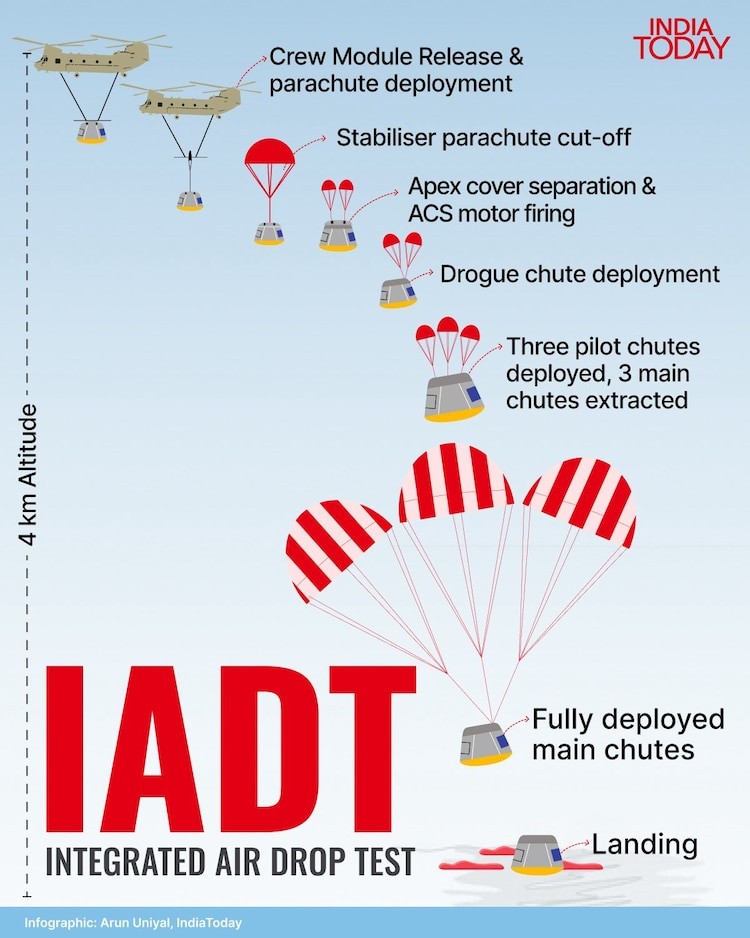
- 28 Aug 2025
In News:
The Indian Space Research Organisation (ISRO)has successfully conducted its firstIntegrated Air Drop Test (IADT-01) for the Gaganyaan human spaceflight programme, marking a critical milestone in validating astronaut safety systems.
Objective of IADT-01
- Test the end-to-end parachute recovery system of the Gaganyaan crew module.
- Demonstrate reliability, sequencing, and redundancy of drogue, pilot, and main parachutes for controlled deceleration and safe splashdown.
- Ensure astronaut safety during the re-entry and landing phases, considered the riskiest part of any human space mission.
Significance
- Validates a vital safety mechanism for Gaganyaan, boosting confidence ahead of upcoming missions like Test Vehicle-D2 (TV-D2) and the first uncrewedGaganyaan mission (G1).
- Strengthens India’s human-rating capabilities, positioning the country to become the fourth nation with independent crewed spaceflight capability.
- Reflects successful inter-agency collaboration among ISRO, Indian Air Force, DRDO, Navy, and Coast Guard.
Gaganyaan Mission Overview
- Crewed mission scheduled for 2028; uncrewed test flight planned in December 2025.
- Mission profile: Carry a three-member crew to low Earth orbit (~400 km) for up to three days, followed by safe return.
- The programme emphasizes astronaut safety, technological reliability, and operational preparedness, with future tests including additional parachute validations, pad abort trials, and sea recovery rehearsals.
Strategic Importance
- Demonstrates India’s capability in human spaceflight, enhancing its global standing in space technology.
- Paves the way for advanced crewed missions and potential applications in scientific research, space exploration, and international collaborations.
India’s Push for 27% Ethanol Blending
- 28 Aug 2025
In News:
India has announced its ambitious plan to increase ethanol blending in petrol to 27% (E27) by 2030, building upon the successful Ethanol Blended Petrol (EBP) Programme launched in 2003. This move aligns with India’s goals of energy security, environmental sustainability, and rural development.
Background and Progress
- EBP Programme: Started with 5% blending, it has grown from less than 2% a decade ago to 10% (E10) by 2022, with 20% blending (E20) projected for 2025, five years ahead of schedule.
- Ethanol Feedstocks: Primarily derived from sugarcane, maize, and surplus food grains, with an increasing push for second-generation ethanol from crop residues and agricultural waste under PM-JI-VAN Yojana.
- Energy Security: India imports nearly 88% of crude oil, spending over $120 billion annually. Ethanol blending reduces crude imports, conserves foreign exchange, and mitigates vulnerability to global price shocks.
- Environmental Goals: Ethanol blends reduce carbon monoxide and hydrocarbon emissions, supporting the National Green Mobility Strategy and India’s Net Zero 2070 commitment.
Economic and Social Benefits
- Farmer Welfare: The programme has channeled over ?1.2 lakh crore to farmers and nearly ?2 lakh crore to distilleries, providing stable markets for sugarcane, maize, and other crops.
- Rural Development: Ethanol distilleries generate employment, promote agro-industries, and reduce distress migration.
- Circular Economy Link: Second-generation ethanol initiatives convert crop residues and waste into energy, addressing stubble burning and enhancing sustainability.
Challenges and Risks
- Food Security: Rising ethanol demand strains maize and grain supplies. In 2023, a 5-million-tonne maize shortfall forced imports, affecting poultry, starch industries, and food prices.
- Water Use: Sugarcane requires 1,500–2,000 litres of water per kg of sugar, risking groundwater depletion in states like Maharashtra and Uttar Pradesh.
- Technological Issues: Higher blends can reduce fuel efficiency by 6–7% in vehicles not designed for ethanol. Adoption of Flex Fuel Vehicles is slow and more costly.
- Supply-Side Constraints: India produced 7 billion litres of ethanol in 2023 but will require over 12 billion litres by 2030. Financially stressed sugar mills and limited investment in grain-based or second-generation plants challenge scaling.
- Infrastructure Needs: Storage, transport, and fuel dispensing networks must expand nationwide to meet E27 targets.
Policy Recommendations
- Feedstock Diversification: Rapid development of second-generation ethanol from crop residues, forestry waste, and municipal solid waste.
- Consumer Incentives: Subsidies for Flex Fuel Vehicles, retrofitting existing engines, and awareness campaigns to ensure adoption.
- Public–Private Partnerships: Investment and collaboration to scale production, distribution, and technology adoption.
- Integration with Clean Energy Transition: Ethanol should complement electric mobility and green hydrogen, serving as a bridge solution for decarbonisation while more transformative technologies mature.
Famine in Gaza
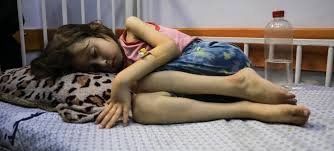
- 28 Aug 2025
In News:
The United Nations has confirmed a famine in Gaza City and surrounding areas, describing it as a “failure of humanity” and a man-made disaster. The declaration follows a report by the Integrated Food Security Phase Classification (IPC), which raised food insecurity in parts of Gaza to Phase 5, the highest level, indicating catastrophic conditions of starvation, destitution, and death.
Scale of the Crisis
- Population affected: Nearly 641,000 people are facing IPC Phase 5 conditions, while 1.14 million (58% of Gaza’s population) are projected to experience emergency-level food insecurity (IPC Phase 4) between mid-August and end of September.
- Children at risk: By June 2026, 132,000 children under five may face life-threatening malnutrition.
- Mortality: Gaza’s Hamas-run health ministry reports 271 deaths due to malnutrition, including 112 children.
- Historical Context: Since 2004, IPC has officially classified only four famines, with the last one in Sudan, 2024.
Causes
The famine is described as “starvation by design” by UN officials:
- Aid Restrictions: Israel has been accused of systematically obstructing humanitarian aid. The UN estimates 600 aid trucks per day are needed, but only 300 trucks are entering daily.
- Conflict Impact: Israel launched a military campaign in response to the Hamas attack on southern Israel in October 2023, leading to mass casualties and displacement. Over 62,000 deaths have been reported in Gaza, with more than 90% of homes damaged or destroyed.
- Infrastructure Collapse: Healthcare, water, sanitation, and hygiene systems have collapsed, exacerbating malnutrition and disease.
International Response
- UN Officials:
- Secretary-General Antonio Guterres called the famine a “moral indictment” and a man-made disaster.
- UNRWA Chief Philippe Lazzarini termed it “starvation by design”.
- UN Human Rights Chief Volker Turk attributed the famine to Israel’s unlawful restriction of aid.
- Global Condemnation:
- UK Foreign Secretary David Lammy described it as a “moral outrage”.
- Humanitarian groups and UN bodies have called for an immediate, at-scale response to prevent widespread starvation.
- Israeli Position: Israel denies a policy of starvation, claiming it has allowed 2 million tons of aid since the conflict began and continues to organize humanitarian corridors and airdrops, though the UN calls these efforts insufficient and sometimes unsafe.
NITI Aayog Report on “Rethinking Homestays: Navigating Policy Pathways”
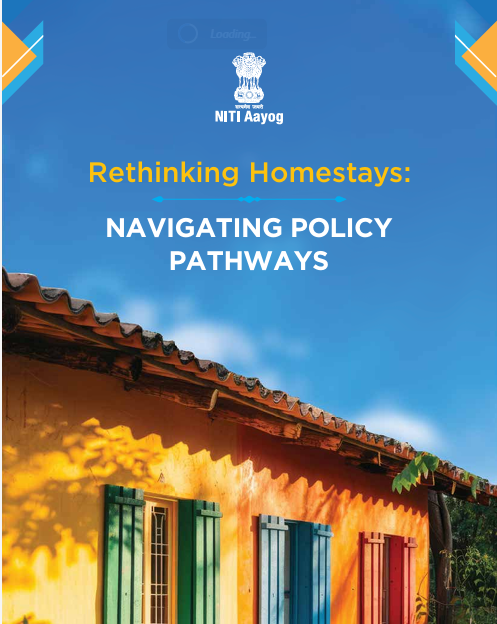
- 28 Aug 2025
In News:
NITI Aayog, in collaboration with the Internet and Mobile Association of India (IAMAI), released the report “Rethinking Homestays: Navigating Policy Pathways”. The document provides a strategic roadmap for strengthening India’s homestay and BnB sector, emphasizing its role in tourism, rural livelihoods, and cultural preservation.
Key Highlights of the Report
- Tourism & Cultural Value: Homestays offer travelers culturally immersive experiences while promoting local entrepreneurship, heritage conservation, and community participation.
- Economic Role: They serve as engines of livelihood creation, particularly in rural and semi-urban areas, fostering inclusive and sustainable growth.
- Regulatory Approach: The report calls for light-touch, transparent regulation to balance safety, consumer trust, and ease of doing business.
- Digital Integration: Strong emphasis on leveraging digital platforms for marketing, consumer engagement, and capacity building of hosts.
- Public–Private Partnerships: Collaboration with stakeholders like Airbnb, MakeMyTrip, IAMAI, ISPP, Chase India, and The Convergence Foundation was highlighted as critical for shaping a vibrant ecosystem.
- Best Practices: State-level examples from Goa, Kerala, Uttarakhand, and Uttar Pradesh showcase scalable models in policy, governance, and community-led initiatives.
- Policy Recommendations: Suggests flexible frameworks, skill development, financial access, and infrastructure support to strengthen the sector.
Significance for India
- Tourism Development – Homestays diversify India’s hospitality sector, offering authentic alternatives to conventional hotels.
- Employment Generation – Potential to create entrepreneurial opportunities for women, youth, and local communities.
- Cultural Preservation – Encourages conservation of art, craft, cuisine, and heritage while generating income.
- Rural Transformation – Helps bridge urban–rural divides by promoting community-based tourism.
- Sustainability – Supports low-impact tourism models, aligning with SDG 8 (Decent Work & Economic Growth) and SDG 11 (Sustainable Cities & Communities).
About NITI Aayog
- Established: 1 January 2015, replacing the Planning Commission.
- Chairperson: Prime Minister of India.
- Vice-Chairperson: Appointed by PM.
- Members: Full-time, part-time experts, ex-officio Union Ministers.
- Governing Council: Chief Ministers of states and LGs of UTs.
- Functions:
- Premier policy think tank for cooperative federalism.
- Provides strategic and long-term policy frameworks.
- Monitors and evaluates development programmes.
- Promotes innovation, entrepreneurship, and technology adoption.
- Coordinates between Centre, States, and global partners.
- Nature: Advisory, yet influential in shaping policies; key driver of initiatives like Aspirational Districts Programme, Atal Innovation Mission, and SDG localization.
Climate Change and Workplace Heat Stress
- 28 Aug 2025
In News:
The WHO–WMO joint report (2025), Climate Change and Workplace Heat Stress, warns that rising global temperatures are creating an unprecedented occupational health and productivity crisis. The year 2024 was the warmest on record, with global average temperatures 1.45°C above pre-industrial levels, and the decade 2015–2024 being the hottest ever recorded.
Key Findings
- Productivity Losses: Each 1°C rise in Wet-Bulb Globe Temperature (WBGT) above 20°C reduces global worker productivity by 2–3%. Sun exposure further raises WBGT by 2–3°C, amplifying risk.
- Scale of Exposure: Over 2.4 billion workers are directly exposed; annually, 22.85 million injuries, 18,970 deaths, and 2.09 million disability-adjusted life years (DALYs) are linked to workplace heat stress (ILO estimates).
- Geographical Hotspots: South Asia, Sub-Saharan Africa, and the Middle East face the highest risks. Heat stress now affects 30% of the global population seasonally or daily.
- Health Impacts: More than one-third of workers in hot conditions report physiological heat strain (hyperthermia, kidney dysfunction, dehydration, neurological problems). WHO safety guidance (1969) recommends that core body temperature during an 8-hour shift not exceed 38°C, a threshold increasingly breached.
- Climate Change Dimension: Daytime peaks of 40–50°C are becoming frequent even outside the tropics. Europe’s 2023 heatwave saw worker fatalities, showing that occupational heat stress is no longer limited to equatorial regions.
India’s Experience
In India, informal workers in brick kilns, construction, agriculture, and power looms are the most affected. Many begin work before sunrise to avoid peak heat, yet still suffer dehydration, dizziness, and lost wages as work hours shrink. Indoor workplaces with poor ventilation often become “furnaces,” leading to chronic fatigue, kidney strain, and even fatalities. By 2030, the ILO projects India could lose 34 million full-time equivalent jobs, particularly in agriculture and construction, due to heat stress.
Wider Implications
- Public Health Burden – Rising cases of heat stroke, cardiovascular collapse, and chronic kidney disease (26.2 million cases in 2020 alone) strain already weak health systems.
- Economic Losses – Developing economies face shrinking GDP as productivity drops; agriculture and construction are most vulnerable.
- Social Inequality – The poor, migrant labourers, and women are disproportionately at risk due to unsafe working conditions and lack of social protection.
- Climate Justice – Regions contributing least to emissions, like Bangladesh and Sub-Saharan Africa, suffer the harshest effects, deepening global inequities.
- Food Security – Agricultural labour productivity loss disrupts crop cycles and threatens farmer incomes, worsening hunger and malnutrition.
- Legal Burden – Rising occupational illness cases risk overwhelming compensation systems and highlight gaps in labour safety laws.
Adaptation Strategies
- Occupational Heat Action Plans: Early warning systems, rescheduling work timings, shaded shelters, and worker training.Example: The Ahmedabad Heat Action Plan (India) has reduced heatwave mortality through alerts, shelters, and training.
- Infrastructure & Technology: Cooling shelters, hydration points, and mechanisation to reduce manual strain.Example: Bangladesh’s garment sector has piloted low-cost ventilation and cooling fans, lowering worker fatigue.
- Labour Policy Reforms: Enforcing heat-index-based work-hour rules, mandatory rest breaks, and compensation for heat-linked illnesses.Example: Qatar bans outdoor work between 10 am–3:30 pm during peak summer.
- Public Health Measures: Hydration protocols, health screenings, and recognition of heat stress as an occupational disease.Example: US OSHA’s “Water–Rest–Shade” campaigninstitutionalises hydration and rest breaks.
- Global & National Coordination: Mainstreaming heat stress into ILO conventions, COP climate talks, and SDG frameworks, with climate finance support for vulnerable economies.Example: Australia integrates climate projections into mining and agriculture workplace safety standards.
National Tiger Conservation Authority’s Corridor Restriction
- 27 Aug 2025
In News:
The National Tiger Conservation Authority (NTCA), the apex statutory body under the Ministry of Environment, Forest and Climate Change (MoEFCC), has recently issued a clarification restricting the definition of tiger corridors to only the 32 “least cost pathways” identified in 2014 and those recorded in Tiger Conservation Plans (TCPs) of individual reserves. This excludes later studies by the Wildlife Institute of India (WII) (2016, 2021) and data from the All-India Tiger Estimation (AITE) exercises.
What are Tiger Corridors?
Tiger corridors are natural pathways that connect fragmented tiger habitats, allowing for:
- Genetic flow and long-term survival of populations.
- Migration and dispersal between reserves.
- Minimisation of human-wildlife conflict through guided movement.
Projects that require land in or around these corridors or reserves need statutory clearance from the Standing Committee of the National Board for Wildlife (SC-NBWL) under the Wildlife Protection Act, 1972.
About NTCA
- Established: 2005 (through 2006 amendment of Wildlife Protection Act, 1972).
- Chairperson: Union Minister of Environment, Forest and Climate Change.
- Functions:
- Approves TCPs of states.
- Provides financial and technical support for tiger conservation.
- Oversees Project Tiger implementation.
- Conducts All-India Tiger Estimation (AITE) every 4 years.
- Ensures ecological connectivity through corridor protection.
The Recent Controversy
- NTCA had earlier told the Bombay High Court (July 2025) that multiple benchmarks would be used to identify corridors, including:
- Protected areas with tiger occupancy.
- 2014 least-cost pathways.
- WII studies (2016, 2021).
- AITE distribution data.
- However, in its latest clarification, NTCA restricted corridors only to 2014 least-cost pathways and TCP records, ignoring updated scientific models.
Potential Beneficiaries
Industrial projects, particularly in Maharashtra, such as:
- Western Coalfields Limited’s Durgapur open cast mines.
- Lloyds Metals & Energy’s Surajgarh iron ore mines in Gadchiroli.
Scientific Concerns
- 2014 NTCA Report itself noted that its corridors were “minimal requirement” and alternative connectivities also needed conservation.
- Newer studies (e.g., Circuitscape modelling, 2025) suggest at least 192 corridors across 10 central Indian states, far beyond the restricted 32.
- Narrowing protection risks fragmentation of habitats, reducing gene flow and increasing chances of local extinctions.
Fortified Rice Scheme Extended to 2028
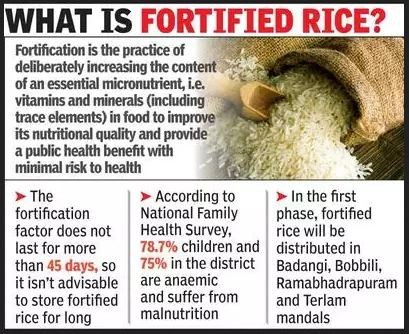
- 27 Aug 2025
In News:
The Union Cabinet has approved the continuation of the universal supply of fortified rice under all government food safety net schemes till December 2028, with 100% central funding of ?17,082 crore. This initiative is part of India’s broader strategy to combat anaemia, malnutrition, and hidden hunger, which remain major public health challenges.
Evolution of the Scheme
- 2018: Launch of Anemia Mukt Bharat (AMB) initiative by MoHFW, emphasising fortified foods.
- 2019: Pilot project for rice fortification introduced in select districts.
- 2022: Government approved national scale-up of fortified rice across welfare schemes.
- March 2024: Fortified rice fully replaced normal rice in all central schemes.
- 2025: Cabinet approved extension till 2028, ensuring continuity with dedicated funding.
Nodal Ministries & Agencies
- Department of Food and Public Distribution (DFPD) under Ministry of Consumer Affairs → implementing agency.
- FSSAI (Food Safety and Standards Authority of India) → sets fortification standards.
- Convergence with Ministry of Education, MoHFW, Ministry of Women and Child Development, and NDDB Foundation for Nutrition.
Components of the Programme
- Public Distribution System (PDS): Fortified rice supplied through ration shops.
- PM POSHAN (Mid-Day Meal): Fortified rice used in school meals; guidelines also promote Double Fortified Salt (DFS) and fortified edible oil.
- Integrated Child Development Services (ICDS): Supplies fortified staples to children and women.
- Special Schemes: Distribution under Wheat-Based Nutrition Programme (WBNP) and Scheme for Adolescent Girls (SAG).
- Complementary Nutrition Initiatives:NDDB’s Gift Milk Programme has provided 7.1 lakh litres of fortified milk, benefitting 41,700 children in 257 schools across 11 states.
Nutritional Focus
- Micronutrients in Fortified Rice: Iron, Folic Acid, and Vitamin B12 → combat iron-deficiency anaemia, support neurological and cognitive health.
- Double Fortified Salt (DFS): Prevents anaemia and goitre.
- Fortified Edible Oil: Provides Vitamins A & D, preventing deficiencies.
Key Features
- Universal Coverage: Fortified rice supplied across all central schemes.
- Cost Coverage: Entire fortification cost borne by the Government of India.
- Monitoring & Accountability: States/UTs tasked with ensuring quality and compliance.
- Multi-Sectoral Approach: Linked with nutrition awareness campaigns and Anemia Mukt Bharat.
- Private & CSR Partnerships: NFN mobilises funds and awareness through CSR and donations.
Wider Context – Food Processing Linkages
The Ministry of Food Processing Industries (MoFPI) supports complementary schemes like:
- PM Kisan SAMPADA Yojana (PMKSY)
- PLI Scheme for Food Processing Industry (PLISFPI)
- PM Formalization of Micro Food Processing Enterprises (PMFME)
These aim to improve supply chains, reduce wastage, and enhance processing levels – strengthening nutrition outcomes alongside fortification.
RBI Discussion Paper on Inflation Targeting
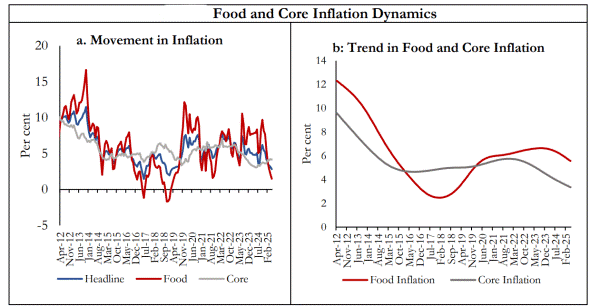
- 27 Aug 2025
In News:
The Reserve Bank of India (RBI), in August 2025, released its discussion paper on reviewing India’s Flexible Inflation Targeting (FIT) framework, which is due for renewal in March 2026. The paper seeks public feedback on key questions such as whether the 4% target remains optimal, whether the 2–6% tolerance band should be revised, and whether the target should be expressed as a point or only a range.
Evolution of the Framework
- Adopted in 2016, the FIT framework formalised inflation targeting in India.
- Current mandate: 4% CPI-based inflation target with a tolerance band of 2–6%, jointly set by the RBI and the Government of India.
- Review cycle: Every five years, with the next mandate to begin April 2026.
Rationale for Retaining the 4% Target
- Credibility with Investors: Raising the target above 4% could be perceived as policy dilution, eroding credibility. Rating agencies like S&P Global recently upgraded India’s rating (BBB), citing the RBI’s strong inflation management.
- Institutional Stability: The framework has strengthened the Monetary Policy Committee (MPC) process and fiscal discipline.
- Domestic Outcomes: Headline CPI inflation has mostly remained within the 2–6% band. In July 2025, it hit 1.55%, the second-lowest since the series began.
- External Balance: Low and stable inflation safeguards the rupee, maintains external competitiveness, and prevents capital outflows.
Headline vs Core Inflation Debate
- Economic Survey 2023–24: Suggested targeting core inflation (excluding food and fuel) as food inflation is largely supply-driven and beyond monetary control.
- RBI’s View: Headline CPI should remain the target, as persistent food shocks spill over into wages, rents, and production costs, influencing core inflation.
- Global Norm: Nearly all inflation-targeting countries focus on headline CPI; Uganda is the only exception.
- Indian Context: Food has ~50% weight in CPI. Excluding it would undermine policy relevance for households and workers.
Key Issues Under Review
- Target Level: Lowering below 4% could hurt growth; raising above 4% risks credibility loss.
- Tolerance Band: Debate on retaining the 2–6% range, narrowing it, or removing it. While a band allows flexibility, it may reduce accountability.
- Inflation Volatility: Between 2014–2025, headline CPI ranged from 1.5% to 8.6%, mainly due to food prices, while core inflation remained relatively stable.
Positive Outcomes of the Framework
- Anchored Expectations: Households and firms now base decisions around a credible 4% anchor, reducing uncertainty.
- Investor Confidence: Predictable inflation management has lowered risk premiums on Indian assets, boosting FDI and portfolio inflows.
- Improved Sovereign Ratings: Low inflation stability has supported fiscal credibility, earning global recognition.
- Resilience to Shocks: Despite global supply disruptions and oil price volatility, India avoided runaway inflation.
India’s Draft Climate Finance Taxonomy
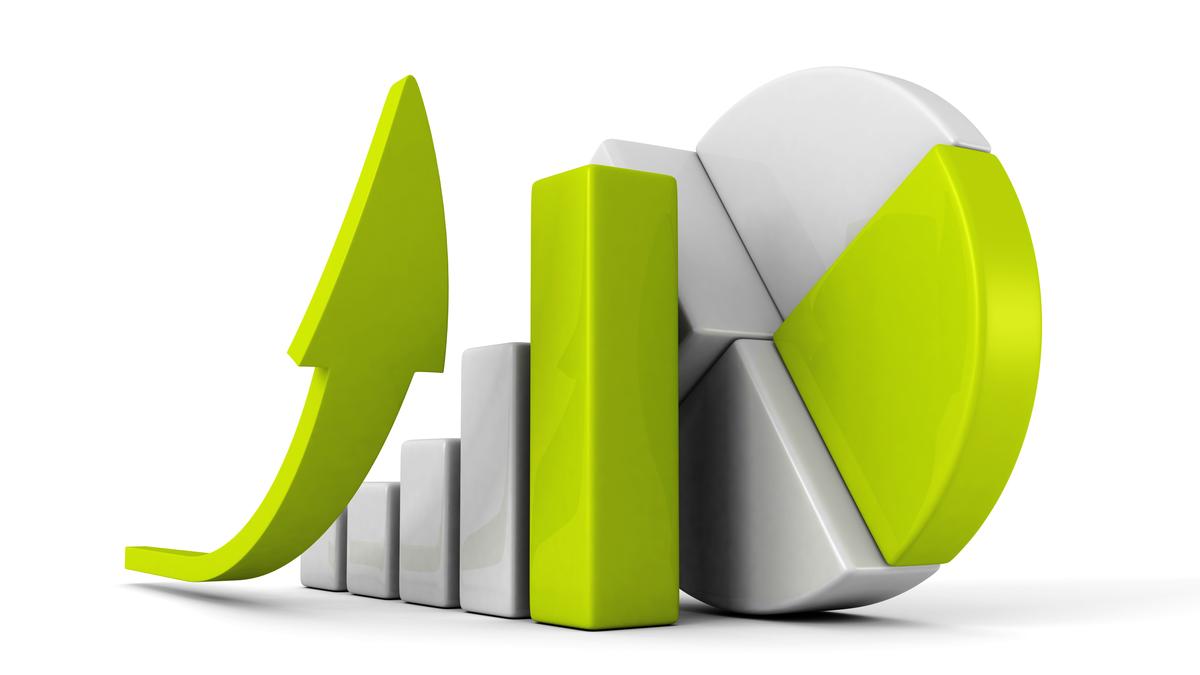
- 27 Aug 2025
In News:
In May 2025, the Ministry of Finance (Department of Economic Affairs) released India’s draft Climate Finance Taxonomy (CFT) for public consultation. This initiative is timely, as it coincides with India’s expanding climate finance ecosystem, including green bonds, carbon credit trading, and global commitments under the Paris Agreement and net-zero targets by 2070.
What is a Climate Finance Taxonomy?
- A classification framework that defines which sectors, technologies, and activities qualify as climate-aligned investments.
- It is described as a “living document”, evolving with India’s domestic priorities and international climate obligations.
- Core purpose: To mobilise public and private finance, ensure transparency, and prevent greenwashing.
Key Features of India’s Draft CFT
- Scope: Covers activities contributing to mitigation, adaptation, and low-carbon transition.
- Review Mechanism
- Annual reviews for course correction.
- Five-year reviews aligned with India’s Nationally Determined Contributions (NDCs) and the UNFCCC global stocktake.
- Legal Coherence
- Designed to be consistent with Indian laws (Energy Conservation Act, SEBI regulations, Carbon Credit Trading Scheme).
- Harmonised with international standards for credibility.
- Substantive Clarity: Provides clear, precise, and updated definitions that are accessible to both experts and non-experts.
- Inclusivity
- Simplified compliance for MSMEs, informal sector actors, and vulnerable communities.
- Staggered timelines for smaller entities to avoid exclusion.
- Institutional Accountability
- Proposal for a standing review unit/expert committee.
- Public dashboards to ensure transparency and investor confidence.
Significance
- Boosts Investor Confidence: Provides clarity for domestic and global investors in India’s green economy.
- Ensures Transparency: Prevents mislabeling of projects as “green,” tackling greenwashing risks.
- Mobilises Finance: Unlocks predictable, science-based finance flows for mitigation and adaptation.
- Supports Net-Zero Goals: Complements instruments like green bonds and carbon credit markets.
- Global Positioning: Strengthens India’s role in shaping international norms on climate finance.
Mercator Projection Map

- 27 Aug 2025
In News:
The African Union (AU) has endorsed the “Correct the Map”campaign, calling for the replacement of the Mercator projection with modern alternatives that represent Africa’s true size. This move is not just cartographic—it is deeply political, tied to questions of historical justice, cultural representation, and global perception.
The Mercator Projection: Origins and Features
- Introduced: 1569 by Gerardus Mercator, a Flemish mathematician and cartographer.
- Purpose: Designed for navigation, enabling sailors to follow a straight line of constant compass bearing (Rhumb lines/loxodromes).
- Structure:
- Meridians (longitude): parallel, vertical, equally spaced.
- Parallels (latitude): horizontal, spacing increases away from the equator.
- Grid forms right angles.
- Strengths: Conformal projection that preserves shapes and angles, ideal for maritime exploration.
- Limitations: Distorts area and scale. True scale exists only along the equator; distortion grows near the poles.
Distortions and Bias
- Africa & South America appear much smaller than their real size.
- Europe, North America, and Greenland are disproportionately enlarged.
- Example: Greenland (≈2.1 million sq km) appears similar in size to Africa (≈30 million sq km).
- Such distortions fed into Eurocentric worldviews, reinforcing colonial narratives of Africa as “smaller” and “conquerable.”
Corrective Measures
- Gall-Peters Projection (1970s): Area-accurate but distorts shapes. Adopted in some schools, e.g., Boston (2017).
- Equal Earth Projection (2018): Balances shape and area, providing a fairer representation of continents.
- AU’s Endorsement: By backing the Equal Earth projection, the AU aims to restore “Africa’s rightful place on the global stage,” highlighting the continent’s true scale and importance.
Agni-5 Missile

- 26 Aug 2025
In News:
India has successfully conducted the test of its nuclear-capable Agni-5 ballistic missile from the Integrated Test Range (ITR), Chandipur, Odisha. The launch was carried out under the Strategic Forces Command (SFC) and validated all operational and technical parameters, marking a significant boost to India’s strategic deterrence capabilities.
About Agni-5 Missile
- Type: Land-based Intercontinental Ballistic Missile (ICBM).
- Developer: Defence Research and Development Organisation (DRDO).
- Range: Beyond 5,000 km, capable of covering most of Asia and parts of other continents.
- Payload Capacity: Equipped with Multiple Independently Targetable Reentry Vehicle (MIRV) technology, enabling it to carry and deliver up to three nuclear warheads simultaneously at different targets.
- Technologies Used: Modern navigation, guidance, warhead, and propulsion systems, ensuring high accuracy and survivability.
Ballistic Missiles – Classification by Range
Ballistic missiles are rocket-propelled strategic weapons that follow a ballistic trajectory after the powered phase:
- Short-range: < 1,000 km (Tactical role).
- Medium-range: 1,000–3,000 km (Theater role).
- Intermediate-range: 3,000–5,500 km.
- Intercontinental (ICBM): > 5,500 km (Strategic role).
Agni-5, with its long range and MIRV capability, places India in the league of nations with advanced ICBM technology.
Strategic Significance
- Strengthens nuclear deterrence under India’s credible minimum deterrence and no first use (NFU) doctrines.
- Enhances India’s security architecture amidst evolving regional and global threats.
- Positions India among the select group of countries (U.S., Russia, China, France) with operational ICBM and MIRV capability.
National Policy to Promote Globally Important Agricultural Heritage Systems (GIAHS) in India
- 26 Aug 2025
In News:
- The Globally Important Agricultural Heritage Systems (GIAHS) programme, launched by the Food and Agriculture Organization (FAO) in 2002 at the World Summit on Sustainable Development, aims to conserve unique agricultural systems that sustain biodiversity, traditional knowledge, and rural livelihoods while adapting to modern challenges such as climate change, biodiversity loss, and community displacement.
- GIAHS adopts a multi-stakeholder approach by offering technical assistance, enhancing the value of traditional agricultural knowledge, and stimulating markets through agrotourism, product branding, and sustainable value chains.
India’s Recognised GIAHS Sites
Currently, India hosts three GIAHS sites, each reflecting diverse agro-ecological and cultural traditions:
- Koraput Region (Odisha):
- Known for subsistence paddy cultivation on highland slopes.
- Conserves a wide range of paddy landraces and farmer-developed varieties.
- Rich in medicinal plant genetic resources, closely linked with indigenous tribal knowledge.
- Supported by community seed banks, organic farming practices, and branding initiatives under state biodiversity programmes.
- Kuttanad Farming System (Kerala):
- A rare below-sea-level farming landscape.
- Comprises wetlands for paddy, garden lands for coconut and food crops, and inland water bodies for fishing and shell collection.
- Infrastructure development works under RKVY-DPR projects, such as HaritamHarippad in Alappuzha, and research on ecological utilization of water hyacinth are underway.
- Saffron Heritage of Kashmir:
- Represents a traditional agro-pastoral system of saffron cultivation.
- Characterized by organic farming practices, intercropping, and soil conservation.
- Supported through Rashtriya Krishi Vikas Yojana (RKVY) and the Mission for Integrated Development of Horticulture (MIDH) for revival and economic sustainability.
National Support Mechanisms
- Government Schemes: RKVY, MIDH, and other sectoral interventions promote conservation, branding, and livelihood opportunities.
- Biodiversity Revival: Emphasis on neglected crops and forgotten foods to ensure resilience.
- Integration with Research: State-supported projects in Kerala and Odisha enhance scientific validation and infrastructure.
Significance
- Ensures balance between conservation and socioeconomic development.
- Protects traditional knowledge systems and cultural landscapes.
- Enhances climate resilience and strengthens India’s commitment to sustainable agriculture.
- Promotes rural development, agrotourism, and niche product markets, thereby contributing to farmer incomes.
NAVYA Initiative

- 26 Aug 2025
In News:
- The Government of India launched the NAVYA (Nurturing Aspirations through Vocational training for Young Adolescent Girls) initiative in June 2025 to strengthen the socio-economic empowerment of adolescent girls (aged 16–18 years), particularly in aspirational districts.
- It is a joint initiative of the Ministry of Skill Development & Entrepreneurship (MSDE) and the Ministry of Women & Child Development (MWCD).
Objectives of NAVYA
- Vocational Training: Provide demand-driven skilling in both traditional and modern sectors.
- Holistic Development: Cover modules on health, nutrition, hygiene, life skills, financial literacy, and legal awareness.
- Enhancing Employability: Facilitate internships, apprenticeships, and job linkages, along with promoting self-employment.
- Gender-Inclusive Skilling: Ensure a safe and supportive training environment for adolescent girls.
- Bridging Gaps: Connect education and livelihood opportunities in underserved and remote regions.
Key Features
- Coverage: Implemented across 19 States and 27 districts, including Barpeta (Assam), Gaya (Bihar), Bastar (Chhattisgarh), Nuh (Haryana), Chamba (Himachal Pradesh), Baramulla (J&K), Raichur (Karnataka), Gadchiroli (Maharashtra), Rayagada (Odisha), Dholpur (Rajasthan), Virudhunagar (Tamil Nadu), Sonbhadra (Uttar Pradesh), and Haridwar (Uttarakhand), among others.
- Beneficiaries: 3,850 adolescent girls are being trained under Pradhan Mantri Kaushal Vikas Yojana (PMKVY) 4.0.
- Modern Job Roles: Training includes digital marketing, cybersecurity, AI-enabled services, green jobs, and other emerging sectors.
- Future Readiness: Modules on life skills, digital competence, and financial literacy prepare participants for evolving workforce demands.
Significance
- Strengthens women-centric skilling ecosystem.
- Promotes inclusive growth and gender equity in workforce participation.
- Supports Atmanirbhar Bharat by creating a skilled workforce in emerging sectors.
- Contributes to SDG 4 (Quality Education), SDG 5 (Gender Equality), and SDG 8 (Decent Work and Economic Growth).
Anna-Chakra
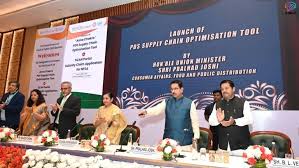
- 26 Aug 2025
In News:
The Government of India has introduced “Anna-Chakra”, a digital supply chain optimisation tool under the Public Distribution System (PDS), aimed at improving efficiency, reducing costs, and minimizing environmental impact in foodgrain distribution.
Implementation Status
- Implemented in 30 out of 31 States/UTs; yet to be implemented in Manipur.
- States/UTs covered include Punjab, Telangana, Tamil Nadu, Rajasthan, Bihar, Gujarat, Maharashtra, Uttar Pradesh, Delhi, J&K, Ladakh, Kerala, Karnataka, Odisha, among others.
Development and Collaboration
- Spearheaded by the Department of Food and Public Distribution.
- Developed in collaboration with:
- World Food Programme (WFP)
- Foundation for Innovation and Technology Transfer (FITT), IIT-Delhi
Working of Anna-Chakra
- Uses advanced algorithms to identify optimal routes for foodgrain movement across supply chain nodes.
- Covers 4.37 lakh Fair Price Shops (FPSs) and around 6,700 warehouses.
- Integrated with:
- FOIS (Freight Operations Information System) of Railways through the Unified Logistics Interface Platform (ULIP).
- PM Gati Shakti platform, which now houses geo-locations of FPSs and warehouses.
Key Benefits
- Financial Savings: Estimated ?250 crore per annum through reduction in transportation costs.
- Efficiency Gains: Faster delivery and streamlined PDS operations in the world’s largest food security programme benefiting 81 crore citizens.
- Environmental Impact: Reduction in fuel consumption and CO? emissions, aligning with India’s climate commitments.
- Operational Improvement: Ensures seamless coordination among multiple stakeholders, from farmers to FPS dealers.
Significance
Anna-Chakra represents a major leap in digitally enabled governance and logistics management, combining technology, sustainability, and welfare delivery. By cutting costs and carbon emissions while enhancing the efficiency of foodgrain delivery, it strengthens India’s food security architecture under the National Food Security Act (NFSA).
e-Jagriti Platform
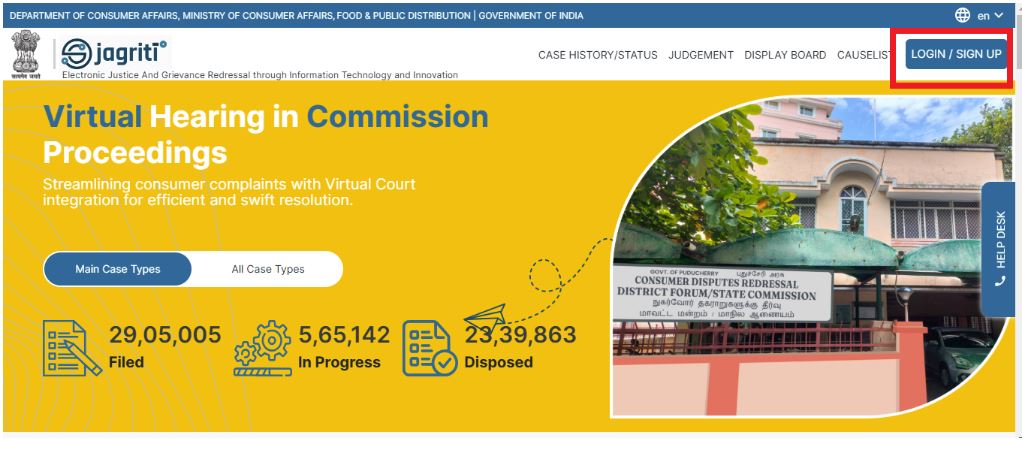
- 26 Aug 2025
In News:
In a significant boost to India’s consumer protection framework, ten States along with the National Consumer Disputes Redressal Commission (NCDRC) achieved a disposal rate of over 100% in July 2025. This indicates that the number of consumer cases resolved exceeded the number of new cases filed, showcasing efficiency in grievance redressal.
Key Disposal Achievements
- NCDRC: 122%
- Tamil Nadu: 277%
- Rajasthan: 214%
- Telangana: 158%
- Himachal Pradesh & Uttarakhand: 150% each
- Meghalaya: 140%
- Kerala: 122%
- Puducherry: 111%
- Chhattisgarh: 108%
- Uttar Pradesh: 101%
This trend highlights faster case resolution and effective functioning of consumer commissions across India.
The e-Jagriti Platform
The success is largely aided by e-Jagriti, a flagship digital initiative of the Department of Consumer Affairs, designed to strengthen the consumer dispute redressal system.
Objectives
- Computerization and networking of all Consumer Commissions (National, State & District).
- Enhancing transparency, efficiency, and speed in dispute resolution.
- Providing accessible, cost-effective, and paperless grievance redressal.
Features
- E-filing of complaints with online fee payment.
- Real-time case tracking and access to judgments.
- AI-powered Smart Search for archived complaints/judgments.
- Voice-to-text conversion of judgments and case details using AI/ML.
- Integration of multiple platforms:
- Online Case Monitoring System (OCMS)
- E-Daakhil
- NCDRC Case Monitoring System
- CONFONET website
- Mediation application
Since its launch, over 2 lakh users (including NRIs) have registered on e-Jagriti, with 85,531 cases filed online in 2025 alone, demonstrating growing public trust.
Significance
- Strengthens consumer rights and access to justice.
- Reduces backlog and delays through tech-driven case management.
- Promotes digital governance and transparency in consumer protection.
- Aligns with citizen-centric reforms and Digital India Mission.
UdyamSakhi Portal
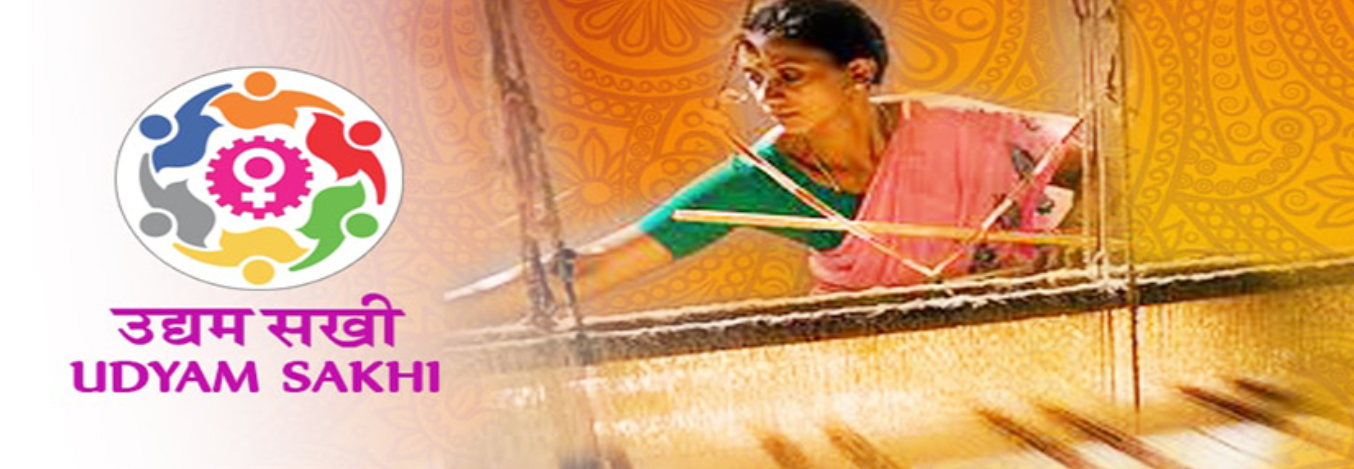
- 25 Aug 2025
In News:
The UdyamSakhi Portal, launched by the Ministry of Micro, Small and Medium Enterprises (MSME) in March 2018, is helping women entrepreneurs across India start, build, and expand their businesses, fostering self-reliance and economic empowerment.
Objectives and Significance
The portal serves as a one-stop resource for existing and prospective women entrepreneurs, providing information on:
- Financial schemes such as the Prime Minister’s Employment Generation Programme (PMEGP), Credit Guarantee Fund Trust for Micro and Small Enterprises (CGTMSE), MUDRA, and Trade Receivables e-Discounting System (TReDS).
- Policies, programs, and business plan preparation.
- Nodal offices and supporting organizations of the MSME Ministry across states.
It also updates users on exhibitions, trade fairs, and international events, creating opportunities to connect with markets and expand business reach.
Programmatic Functions
UdyamSakhi provides a comprehensive suite of services, including:
- Entrepreneurship learning tools and guidance for business model creation
- Incubation facilities for nurturing startups
- Training programs for fundraising
- Mentorship support and one-on-one investor interactions
- Market survey support
- Learning and development through education, information, technical assistance, and training
The portal acts as a network for nurturing entrepreneurship, especially for low-cost products and services, enabling women to become self-reliant and self-sufficient.
Outreach and Impact
Since its inception, the portal has seen 4,535 women register, demonstrating its growing impact on women-led entrepreneurship in the MSME sector. Developed with an expenditure of ?43.52 lakh, the portal continues to expand access to resources, guidance, and opportunities for women entrepreneurs nationwide.
Sliteye Shark
- 25 Aug 2025
In News:
For the first time, scientists have recorded the sliteye shark (Loxodonmacrorhinus) in the Great Chagos Bank, the world’s largest coral atoll in the Indian Ocean. The discovery underscores the hidden biodiversity of the Chagos Archipelago and its Marine Protected Area (MPA), highlighting the ecological importance of deepwater habitats.
About the Sliteye Shark
The sliteye shark is a small-bodied requiem shark in the family Carcharhinidae and is the only species in the genus Loxodon. Named for its distinctive slit-like eyes, the species is adapted to low-light, deepwater environments, though it can also inhabit clear, shallow seas.
- Scientific Name:Loxodonmacrorhinus
- Size: Up to 95 cm in length
- Features: Slender body, long narrow face, large eyes, short furrows at mouth corners, small teeth with protruding tips, absent or rudimentary ridge between dorsal fins, gray coloration with white belly, dark-edged caudal and first dorsal fins
- Distribution: Tropical waters of the Indian and western Pacific Oceans, including countries such as India, Indonesia, Sri Lanka, Japan, Australia, China, Kenya, South Africa, and others between 34°N and 30°S
Discovery in Chagos
- Researchers observed two sliteye sharks at depths of 23–29 metres, just 11 km apart, using Baited Remote Underwater Video systems in deep seagrass habitats on the southern rim of the Great Chagos Bank. These meadows, first mapped in 2016 using satellite tracking of green turtles, support more than 110 fish species and are now confirmed as important for sliteye sharks as well.
Conservation Concerns
- The sliteye shark is classified as Near Threatened by the IUCN Red List, with populations projected to decline by approximately 30% over the next 15 years due to heavy fishing pressure.
- The Chagos discovery raises critical questions regarding the species’ abundance, habitat use, and conservation needs.
- The study forms part of a project led by Swansea University in collaboration with international partners, funded by the Bertarelli Foundation, with full findings expected in 2026. The results strengthen the case for protecting deepwater seagrass habitats in the Indian Ocean.
Sakura Science Programme 2025
- 25 Aug 2025
In News:
- A group of 34 students from government schools across India has been selected to participate in the Sakura Science Programme 2025, a prestigious Japan-Asia Youth Exchange Program in Science.
- The initiative, implemented by the Japan Science and Technology Agency (JST), provides young learners an opportunity to explore cutting-edge scientific innovations and experience Japanese culture firsthand.
Programme Details
- The 2025 edition of the programme was held, with participants from India, Egypt, Ghana, Kenya, Nigeria, South Africa, and Zambia. The Indian delegation consists of students, hailing from nine states—Andhra Pradesh, Bihar, Delhi, Himachal Pradesh, Lakshadweep, Odisha, Puducherry, West Bengal, and the Regional Institute of Education (RIE) demonstration schools in Ajmer, Bhopal, Bhubaneswar, and Mysuru. The students will be accompanied by three supervisors.
- The selected students were flagged off at a ceremony at NCERT, New Delhi, hosted by the Ministry of Education’s Department of School Education & Literacy (DoSEL), attended by key officials including Sanjay Kumar, Secretary of DoSEL, Professor Prakash Chandra Agrawal, Joint Director of NCERT, and Archana Sharma Awasthi, Joint Secretary of DoSEL.
Background and Objectives
Launched globally in 2014, the Sakura Science Programme aims to foster scientific curiosity among youth and promote international collaboration. India joined the programme in 2016, and since then, over 630 Indian students and 90 supervisors have participated.
The programme’s objectives include:
- Developing talented human resources overseas with potential contributions to science and technology innovation.
- Facilitating international brain circulation.
- Promoting continuous collaboration between Japanese and foreign educational and research institutes.
- Strengthening diplomatic relations through science and technology exchanges.
Through short-term visits to Japan, students gain exposure to advanced scientific research, innovation ecosystems, and Japanese culture, fostering both academic growth and cross-cultural understanding.
Nepal Eliminates Rubella
- 25 Aug 2025
In News:
The World Health Organization (WHO) has officially announced that Nepal has eliminated rubella as a public health problem, marking a significant achievement in the country’s fight against vaccine-preventable diseases. Nepal is the sixth country in the WHO South-East Asia Region to achieve rubella elimination, joining Bhutan, DPR Korea, Maldives, Sri Lanka, and Timor-Leste.
About Rubella
- Rubella, also known as German measles or three-day measles, is a highly contagious viral infection caused by the Rubella virus, an enveloped, single-stranded RNA virus distinct from the measles virus.
- Rubella primarily spreads through coughing, sneezing, or contact with contaminated surfaces, and can also be transmitted from a pregnant woman to her fetus.
- While rubella generally causes mild or no symptoms, the hallmark is a spotty red rash starting on the face or behind the ears and spreading to the neck and body.
- Infection during early pregnancy is particularly dangerous, with a 90% chance of virus transmission to the fetus, potentially causing miscarriage, stillbirth, or Congenital Rubella Syndrome (CRS). CRS may result in hearing impairments, eye and heart defects, and lifelong disabilities, including autism, diabetes, and thyroid dysfunction.
- Currently, there is no specific treatment for rubella, and symptoms are generally managed with rest and fever-reducing medications. Prevention through vaccination is key: the measles-mumps-rubella (MMR) vaccine is safe, highly effective, and provides lifelong protection.
Nepal’s Rubella Elimination Journey
- Nepal introduced the rubella-containing vaccine in its immunization program in 2012, targeting children aged 9 months to 15 years. A second dose was added to the routine immunization schedule in 2016.
- Nationwide campaigns in 2012, 2016, 2020, and 2024 helped achieve over 95% coverage for at least one dose, despite challenges such as the COVID-19 pandemic and earthquakes in 2015 and 2023.
- The country implemented innovative strategies such as observing an “immunization month,” outreach programs for missed children, and incentives for districts to achieve “fully immunized” status. Nepal also strengthened rubella surveillance through a robust laboratory testing algorithm, the first of its kind in the WHO South-East Asia Region.
Regional and Global Recognition
The Regional Verification Commission for Measles and Rubella (SEA-RVC), established in 2016, reviewed data from Nepal’s National Verification Committee and recommended verification of rubella elimination. Nepal’s Ministry of Health and Population acknowledged the contribution of government leadership, health workers, volunteers, and communities, alongside support from WHO and Gavi, in achieving this milestone.
The WHO South-East Asia Region initially aimed to eliminate measles and control rubella by 2020, later revising the target to 2023, and finally extending to 2026 due to setbacks caused by the COVID-19 pandemic. Nepal’s early achievement underscores the strength of its national immunization program and serves as a model for other countries in the region.
SWAYAM Portal
- 25 Aug 2025
In News:
The Ministry of Education (MoE) has launched five free Artificial Intelligence (AI) courses on the SWAYAM portal to equip students with the skills required in the rapidly growing AI-driven economy. These courses aim to enhance employability, promote research and innovation, and provide access to high-quality education for learners across India.
About SWAYAM
SWAYAM (Study Webs of Active–Learning for Young Aspiring Minds) is India’s indigenous Massive Open Online Course (MOOC) platform, launched in 2017. It seeks to bridge the digital divide and provide access to education for students across rural and urban areas. The platform hosts courses from Class 9 to post-graduation across disciplines including Engineering, Science, Humanities, Management, Commerce, Arts, Mathematics, and Language.
Courses are delivered in four quadrants:
- Video lectures
- Downloadable reading material
- Self-assessment tests (quizzes and assignments)
- Online discussion forums
Courses are free of cost, though learners opting for certification must pay a nominal fee. Successful completion is assessed through a proctored examination, and the earned credits can be transferred to a student’s academic record under UGC’s Credit Framework for Online Learning (2016).
National Coordinators of SWAYAM
- AICTE: Self-paced and international courses
- NPTEL: Engineering courses
- UGC: Non-technical post-graduate education
- CEC: Undergraduate education
- NCERT & NIOS: School education
- IGNOU: Out-of-school learners
- IIMB: Management studies
- NITTTR: Teacher training programs
- Institutes of National Importance (INI): Non-technical courses
SWAYAM Plus Platform
SWAYAM Plus, operated by IIT Madras, offers industry-collaborated courses to enhance employability. It focuses on sectors such as Manufacturing, Energy, IT/ITES, Healthcare, Management, Hospitality, and Indian Knowledge Systems, with features like multilingual content (12 Indian languages), AI-enabled guidance, credit recognition, and employment pathways.
Free AI Courses Offered
- AI/ML Using Python: Covers basics of AI, Machine Learning, Statistics, Linear Algebra, Optimization, Data Visualization, and Python programming. Duration: 36 hours with certification assessment.
- Cricket Analytics with AI: Introduces sports analytics using Python with cricket as a case study. Offered by IIT Madras. Duration: 25 hours with multiple-choice assessment.
- AI in Physics: Demonstrates how Machine Learning and Neural Networks can solve real-world physics problems through interactive sessions and lab work. Duration: 45 hours.
- AI in Accounting: Focused on commerce and management students, explaining applications of AI in accounting practices. Duration: 45 hours with certification assessment.
- AI in Chemistry: Teaches prediction of molecular properties, reaction modeling, and drug design using AI and Python. Duration: 45 hours, offered by IIT Madras.
These courses exemplify practical applications of AI, such as predicting outcomes from data—for instance, estimating the speed of the next ball in cricket by analyzing past records. They aim to prepare students for careers in technology, innovation, and research, keeping India at the forefront of the AI revolution.
Almond Cultivation in Kashmir

- 24 Aug 2025
In News:
The almond harvest in Kashmir is not only a vital agricultural activity but also a culturally significant seasonal event. This year’s bumper crop has brought relief and optimism to local farmers, reinforcing the economic and social importance of almond cultivation in the region.
About Almonds:
- Almonds are among the oldest and most widely cultivated tree nuts in the world, with two primary types: sweet almonds and bitter almonds.
- They are used extensively in culinary preparations, including sweets, almond milk, and as raw nuts, and are also processed for almond oil.
Climatic and Soil Requirements:
- Climate: Almond trees thrive in colder regions.
- Temperature: Optimal growth occurs between 7°C and 24°C.
- Soil: Deep, loamy, well-drained soils are ideal.
- Rainfall: Requires an average of 75–110 cm of rainfall.
- Altitude: Can grow effectively at 750–3200 meters above sea level.
Global and Indian Context:
- Major producing countries: USA, Australia, Spain, Turkey.
- In India: Almond cultivation is concentrated in hilly and colder regions, primarily in Jammu & Kashmir, Himachal Pradesh, Uttarakhand, with smaller cultivation in Kerala and some hilly areas of Andhra Pradesh.
Economic and Cultural Significance in Kashmir:
- Almond farming provides livelihoods to thousands of farmers in the region.
- The harvest season coincides with local festivals and traditional practices, reinforcing the crop’s cultural relevance.
- This year’s abundant yield has boosted local income and food security.
Primary Amoebic Meningoencephalitis (PAM)
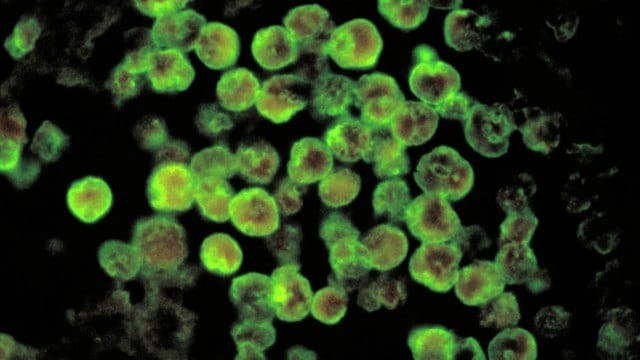
- 24 Aug 2025
In News:
Kerala’s Kozhikode district has reported three recent cases of primary amoebic meningoencephalitis (PAM), including the death of a nine-year-old girl. A three-month-old infant and another child are currently receiving treatment. Following these incidents, the state health department has issued an alert to prevent further infections.
About Primary Amoebic Meningoencephalitis (PAM):
- Definition: PAM is a rare but severe infection of the brain and its protective membranes, caused by the free-living amoeba Naegleria fowleri, popularly called the “brain-eating amoeba.”
- Transmission: The amoeba thrives in warm, fresh water, soil, hot tubs, and improperly maintained swimming pools. Infection occurs when contaminated water enters the nose, allowing the pathogen to reach the brain and meninges. Dust or soil exposure can also serve as potential sources.
- Symptoms: Include headache, fever, nausea, vomiting, sore throat, hallucinations, and neurological deterioration. PAM progresses rapidly, often proving fatal within days.
- Treatment: Early diagnosis and administration of specific antibiotics can sometimes save lives, but recovery is rare. Globally, the disease has a 97% fatality rate, whereas Kerala has reduced it to 25% due to prompt medical interventions and protocols.
Other Amoebic Infections:
- Granulomatous Amebic Encephalitis (GAE): Caused by Acanthamoeba or Balamuthia mandrillaris, GAE progresses more slowly than PAM but is equally deadly if untreated. Unlike PAM, GAE does not necessarily require water exposure for infection.
Epidemiology in Kerala:
- The first PAM case in India was reported in 1971, and Kerala’s first case occurred in 2016. From 2016 to 2023, eight cases were confirmed in the state.
- Last year, Kerala recorded 36 positive cases with nine deaths, prompting the development of the state’s first standard operating procedure (SOP) for managing amoebic meningoencephalitis.
- Notably, in July 2024, a 14-year-old boy in Kozhikode became the first Indian to survive PAM, only the 11th survivor globally.
Factors Contributing to Recent Cases:
- Increased testing for acute encephalitis syndrome (AES).
- Environmental changes, including climate change and pollution.
- Greater awareness and proactive healthcare measures, leading to earlier detection and treatment.
Ionic Liquids
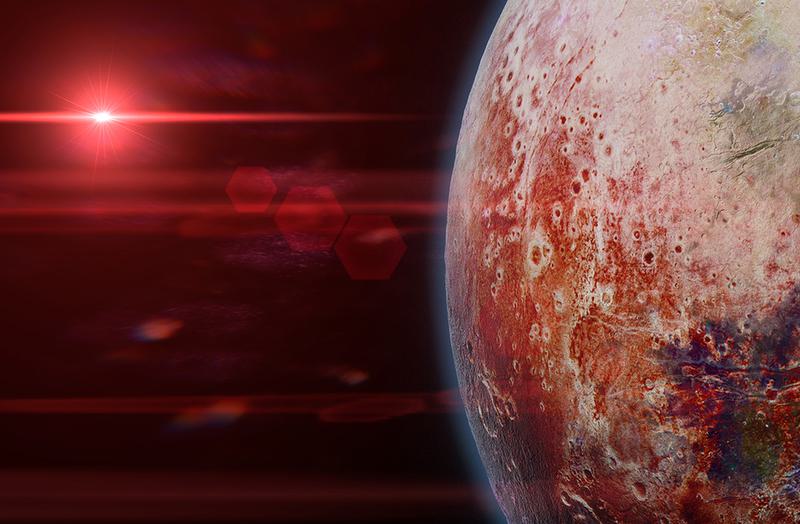
- 24 Aug 2025
In News:
Recent scientific research suggests that life could exist on rocky super-Earths with volcanic activity and minimal water, thanks to ionic liquids (ILs)—salts that remain liquid even in extreme conditions such as a vacuum.
About Ionic Liquids (ILs):
- ILs are salts that are liquid at room temperature, typically with melting points below 100°C.
- Unlike ordinary liquids composed of neutral molecules, ILs are made entirely of ions or short-lived ion pairs.
- Examples include tetrabutylammonium nitrite, 1-(Cyanomethyl)-3-methylimidazolium chloride, and choline acetate.
- ILs are also called liquid electrolytes, ionic melts, ionic fluids, fused salts, liquid salts, or ionic glasses.
Properties and Significance:
- Non-volatile and non-flammable, making them safe under extreme conditions.
- Thermally and chemically stable, resisting decomposition up to 200–400°C depending on composition.
- Can be hydrophobic or hydrophilic, and act as good conductors with a broad electrochemical range.
- Highly tunable: Their physico-chemical properties can be modified by changing the size and type of ions, making them versatile in applications.
Applications in Science and Industry:
- Widely used in synthesis, catalysis, extraction, electrochemistry, analytics, and biotechnology.
- Serve as environmentally friendly alternatives to conventional organic solvents and catalysts.
- Their stability under heat and vacuum conditions allows their use in high-temperature processes.
Role in Supporting Extraterrestrial Life:
- Laboratory experiments demonstrated that ILs can be created by mixing volcanic sulphuric acid with nitrogen-containing organic molecules found on planets.
- These liquids can dissolve biological molecules, offering a medium for biochemical reactions without the need for liquid water.
- This discovery expands the scope of habitable environments beyond Earth-like conditions, suggesting that life could potentially survive on arid, volcanic exoplanets.
SarvottamYudhSeva Medals
- 24 Aug 2025
In News:
On the eve of the 79th Independence Day, President DroupadiMurmu approved the awarding of seven SarvottamYudhSeva Medals (SYSM), the nation’s highest wartime distinguished service honour, to the leaders of Operation Sindoor, marking the first such awards since the Kargil War.
About the SarvottamYudhSeva Medal:
- Institution: 26 June 1980, to recognise distinguished service of the highest order during war, conflict, or hostilities.
- Eligibility: All ranks of the Army, Navy, Air Force, including Territorial Army Units, Auxiliary and Reserve Forces, and lawfully constituted Armed Forces when embodied. Nursing officers and members of the Nursing Services are also eligible. Awards can be given posthumously.
- Design: Circular medal, 35 mm in diameter, gold gilt, with the State Emblem and inscription “SARVOTTAM YUDH SEVA MEDAL” on the obverse, and a five-pointed star on the reverse. The ribbon is golden with a red vertical stripe in the centre. Subsequent awards are recognised by a Bar on the ribbon with a miniature insignia.
- Significance: Considered the wartime equivalent of the Param VishishtSeva Medal (PVSM) for exceptional service in peacetime. Previously awarded to three officers for Kargil War leadership: Lt Gen Amarjit Singh Kalkat, Air Marshal Vinod Patney, and Lt Gen Hari Mohan Khanna.
Escherichia coli
- 24 Aug 2025
In News:
Researchers have recently developed a method to transform genetically engineered Escherichia coli (E. coli) bacteria into self-powered chemical sensors capable of detecting mercury and directly interfacing with electronic devices. This breakthrough represents a significant advancement in environmental monitoring and bioengineering.
About Escherichia coli:
- E. coli is a rod-shaped bacterium belonging to the Enterobacteriaceae family, commonly found in the intestines of humans and animals.
- Most strains are harmless or beneficial, aiding digestion, but certain strains can cause illnesses such as diarrhea, urinary tract infections, respiratory issues, and pneumonia.
- Pathogenic strains, particularly Shiga toxin-producing E. coli (STEC), produce toxins that damage the intestinal lining, leading to symptoms such as fever, persistent diarrhea, bloody stools, and vomiting.
- Transmission occurs through contaminated food, water, or contact with fecal matter from infected individuals or animals.
- Most infections are self-limiting, and treatment primarily focuses on hydration and symptomatic care.
E. coli as a Mercury Sensor:
By leveraging synthetic biology, scientists have reprogrammed E. coli to detect trace amounts of mercury, a highly toxic heavy metal. These bacteria generate an electrical signal when they encounter mercury, allowing direct interfacing with electronic devices to provide real-time monitoring of environmental contamination.
Significance and Applications:
- Provides a low-cost, eco-friendly alternative to conventional mercury detection methods, which often rely on expensive and sophisticated instruments.
- Potential use in monitoring water bodies, industrial effluents, and soil for mercury pollution.
- Demonstrates the broader potential of bioengineered microorganisms in environmental sensing, medical diagnostics, and bio-electronic devices.
This development highlights the convergence of microbiology, synthetic biology, and electronics, paving the way for innovative solutions in pollution monitoring and environmental safety.
Golden Dome Missile Defense Shield

- 23 Aug 2025
In News:
The Golden Dome is a proposed ground- and space-based missile defense system of the United States, announced in 2025 with a projected outlay of $175 billion. It is designed to provide multi-layered protection against intercontinental ballistic missiles (ICBMs), hypersonic weapons, and cruise missiles from adversaries such as China, Russia, Iran, and North Korea.
Objectives
- Establish a comprehensive shield capable of intercepting hostile missiles in their boost, midcourse, and terminal phases.
- Enhance U.S. homeland security through satellite-based early warning, tracking, and interception.
- Integrate existing U.S. missile defense systems into a unified architecture.
Key Features
- Space-Based Layer
- Hundreds of satellites equipped with sensors and interceptors to detect and neutralize missiles soon after launch.
- Incorporation of laser-based systems for mid-flight interception.
- Ground-Based Layers
- Layer 2: Strengthening of the existing Ground-Based Midcourse Defense (GMD) in California and Alaska.
- Layer 3: Five new land-based launch sites (three in continental U.S., two in Hawaii and Alaska) to intercept missiles during their space trajectory.
- Layer 4: “Limited Area Defense” to protect key population centers, using radars, common launchers, and systems like Patriot, THAAD, and Aegis BMD.
- Integration with Existing Systems
- Builds upon existing U.S. missile defense infrastructure to ensure layered and redundant protection.
Comparison with Other Systems
- Israel’s Iron Dome: Golden Dome is often compared to Iron Dome, though the latter is designed for short-range rockets (4–70 km), while Golden Dome targets long-range ballistic and hypersonic threats.
- Reagan’s Strategic Defense Initiative (SDI/“Star Wars”): Golden Dome revives the 1980s concept of space-based defenses, but with advanced modern technology in satellites, sensors, and lasers.
Challenges
- Funding uncertainties: Though an initial $25 billion allocation has been proposed, political hurdles remain.
- Technological feasibility: Space-based interceptors and lasers pose significant challenges in cost, testing, and deployment.
- Strategic implications: Critics argue the system could revive debates on arms races and anti-ballistic missile treaties.
Significance
If realized, the Golden Dome would represent the most ambitious U.S. missile defense program since the Cold War, potentially altering global strategic stability by providing the U.S. with a multi-domain shield against next-generation missile threats.
Sri Lanka–India Naval Exercise (SLINEX-25)
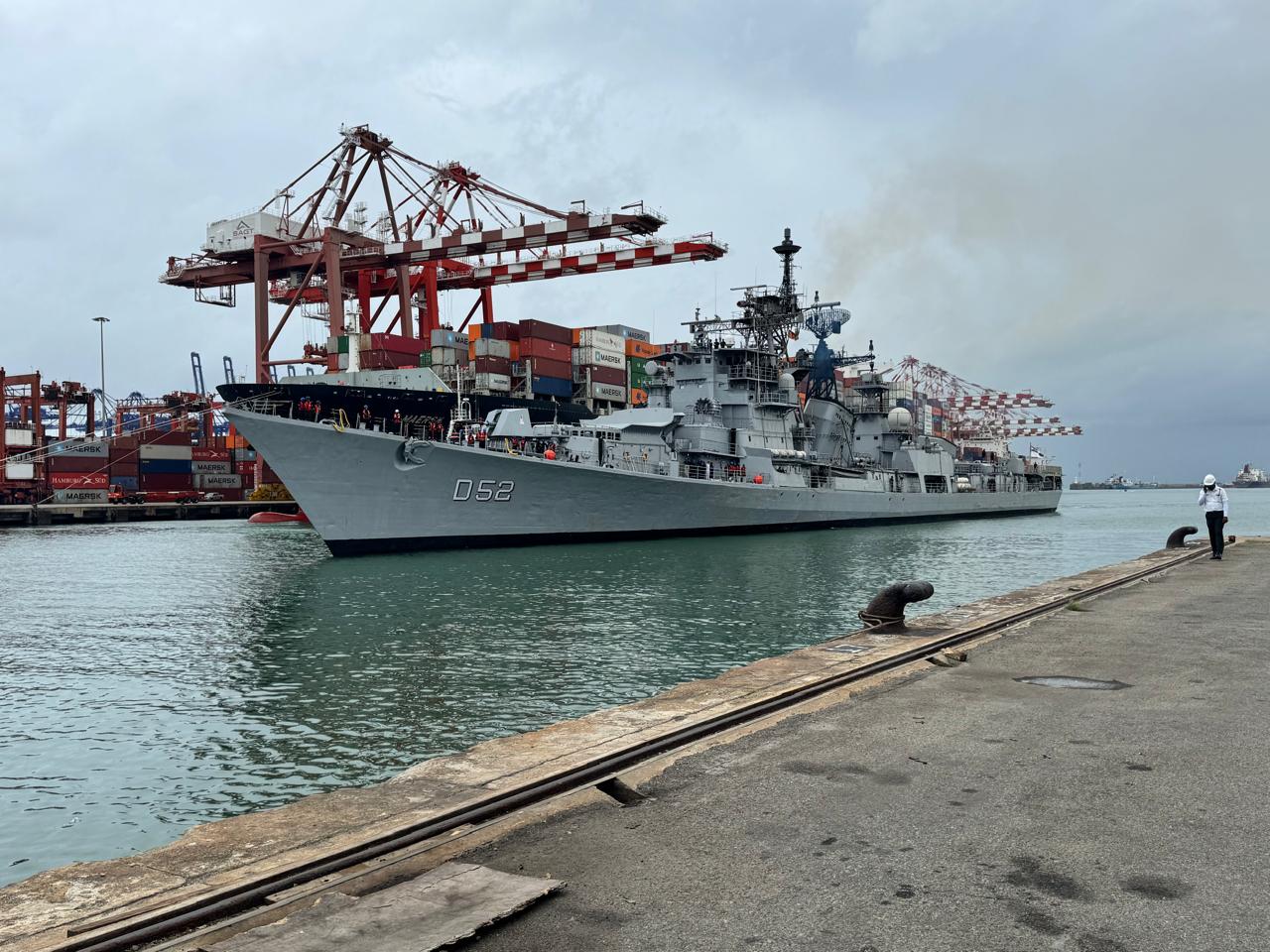
- 23 Aug 2025
In News:
The 12th edition of the Sri Lanka–India Naval Exercise (SLINEX-25)was held recently, marking another milestone in the two-decade-long maritime cooperation between India and Sri Lanka. The exercise underscores India’s commitment to strengthening regional security in line with its vision of MAHASAGAR (Mutual and Holistic Advancement for Security and Growth Across Regions).
Background
- Initiation: Conceptualised in 2005, SLINEX has emerged as a key bilateral exercise, promoting interoperability and mutual trust.
- Previous edition: Conducted at Visakhapatnam, India in December 2024.
Participants
- India: INS Rana (Guided Missile Destroyer) and INS Jyoti (Fleet Tanker).
- Sri Lanka: SLNS Gajabahu and SLNS Vijayabahu (Advanced Offshore Patrol Vessels).
- Special Forces from both navies also took part.
Structure of the Exercise
- Harbour Phase:
- Professional interactions and Subject Matter Expert Exchanges (SMEE).
- Sharing of best practices, cultural and social events, yoga sessions, and sporting activities to strengthen naval camaraderie.
- Sea Phase:Naval drills including gunnery firing, seamanship evolutions, navigation, communication protocols, fueling at sea, and Visit Board Search and Seizure (VBSS) operations.
Significance
- Enhances interoperability between the two navies for multi-faceted maritime operations.
- Facilitates capacity-building and knowledge-sharing in naval tactics.
- Deepens people-to-people and defence diplomacy ties, reinforcing maritime security in the Indian Ocean Region (IOR).
- Complements India’s broader strategic engagement under MAHASAGAR to promote cooperative security and growth in the region.
Pradhan Mantri Viksit Bharat Rozgar Yojana
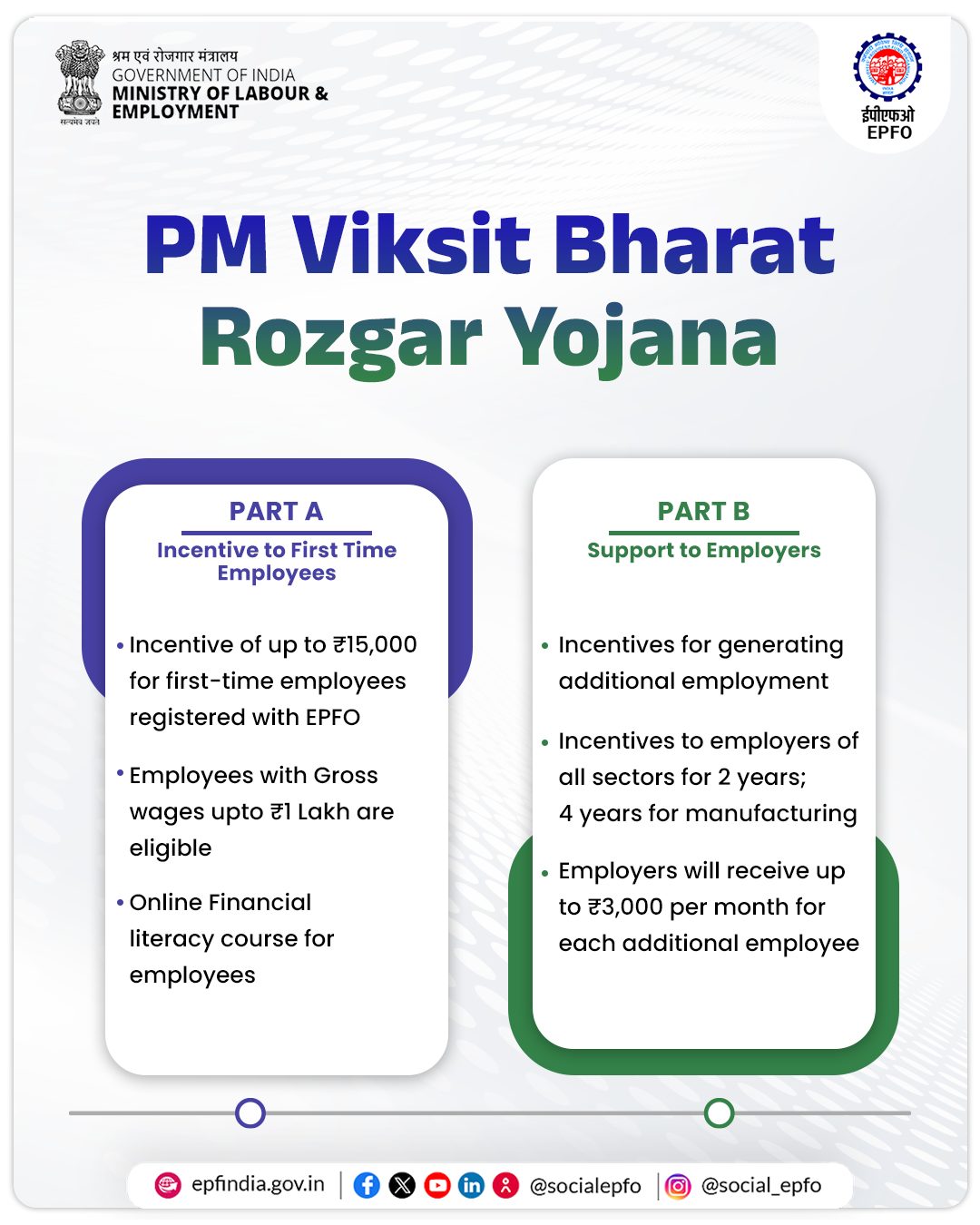
- 23 Aug 2025
In News:
In his 12th Independence Day address from the Red Fort (15 August 2025), Prime Minister Narendra Modi announced the launch of the Pradhan Mantri Viksit Bharat Rozgar Yojana (PMVBRY). With an ambitious financial outlay of nearly ?1 lakh crore, the scheme aims to generate over 3.5 crore jobs in two years, representing a landmark initiative to strengthen the bridge from Swatantra Bharat to Samriddha Bharat through massive employment creation.
Objectives
The scheme seeks to:
- Boost formal job creation by offering direct financial incentives to both employees and employers.
- Promote workforce formalisation by bringing more workers under the ambit of the Employees’ Provident Fund Organisation (EPFO).
- Encourage savings and financial literacy among youth entering the workforce for the first time.
- Catalyse employment growth in the manufacturing sector, a critical pillar of Make in India and Atmanirbhar Bharat.
Key Features of the Scheme
Part A – Support to First-Time Employees
- Targets first-time employees registered with EPFO.
- Provides one month’s EPF wage support up to ?15,000, disbursed in two instalments:
- First instalment after 6 months of continuous service.
- Second instalment after 12 months, subject to completion of a financial literacy programme.
- Incentive is partly locked in a savings/deposit account to encourage long-term financial discipline.
- Employees earning up to ?1 lakh per month are eligible.
- Expected to benefit 1.92 crore first-time employees.
Part B – Incentives for Employers
- Employers will be incentivised to create additional formal jobs, with a focus on manufacturing.
- Incentive: up to ?3,000 per employee per month for two years, provided the employment is sustained for at least six months.
- For the manufacturing sector, support will extend to the 3rd and 4th year as well.
- Expected to facilitate the creation of 2.6 crore jobs.
Incentive Payment Mechanism
- Payments to employees under Part A will be made via Direct Benefit Transfer (DBT) using the Aadhaar Bridge Payment System (ABPS).
- Payments to employers under Part B will be credited directly into PAN-linked accounts.
e-Sushrut@Clinic
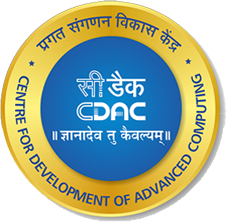
- 23 Aug 2025
In News:
- India’s healthcare system is undergoing rapid digital transformation under the Ayushman Bharat Digital Mission (ABDM), launched in 2021 to build an integrated digital health infrastructure.
- In this context, the National Health Authority (NHA) and the Centre for Development of Advanced Computing (C-DAC) have signed an MoU to roll out e-Sushrut@Clinic—a lightweight, government-backed Hospital Management Information System (HMIS).
- Designed specifically for small and medium healthcare providers, this initiative seeks to bridge the digital divide, enhance interoperability, and empower clinics with affordable, secure, and efficient digital solutions.
Need for a Digital HMIS for Small Providers
- The demand for a trustworthy and affordable HMIS has been persistent, especially among small clinics and medium hospitals that face resource constraints.
- Feedback from ABDM microsites revealed the challenges of adopting costly and fragmented private solutions. While large hospitals like AIIMS have already benefitted from C-DAC’s flagship e-Sushrut HMIS—currently operational in 17 AIIMS and over 4,000 health facilities—a simplified version was needed for smaller stakeholders.
- By addressing these gaps, e-Sushrut@Clinic provides a low-cost, easy-to-adopt, and ABDM-enabled platform that ensures inclusivity in India’s digital health journey.
Features of e-Sushrut@Clinic
- Lightweight Cloud-Based System: Tailored for outpatient management, with pharmacy and nursing modules.
- Ease of Onboarding: Providers can register using the Health Facility Registry (HFR) and Health Professionals Registry (HPR). Even unregistered facilities can directly sign up on the platform.
- Comprehensive Utilities: Facilitates patient record digitization, prescriptions, billing, and telemedicine with minimal technical burden.
- Integration with ABDM Tools: Enables interoperability across the health ecosystem.
- Clinical Decision Support Systems (CDSS): Offers free AIIMS-developed modules for hypertension and diabetes, supporting doctors in evidence-based diagnosis and treatment.
- Patient-Centric Benefits: Enhances efficiency, data security, and patient satisfaction through transparent and reliable digital care.
Significance for Healthcare Delivery
- For Providers – Simplifies administrative processes, reduces paperwork, and improves continuity of care.
- For Patients – Facilitates secure access to health records, better treatment planning, and telemedicine consultations.
- For the System – Creates a standardised, interoperable, and government-backed HMIS that strengthens trust and accelerates the adoption of ABDM.
By reducing barriers to digital adoption, this initiative will benefit tens of thousands of doctors and facility managers nationwide.
Contribution to ABDM and Digital India
- e-Sushrut@Clinic is a pivotal step in expanding the ABDM ecosystem, which aims to create a digital health highway connecting patients, providers, and policymakers. Its low per-user cost ensures affordability, while government backing guarantees credibility.
- The platform complements other digital health initiatives by promoting transparency, efficiency, and interoperability.
- Moreover, it aligns with the Digital India mission, ensuring that even small clinics in rural and semi-urban areas can be integrated into the national digital health infrastructure.
Online Gaming Bill, 2025
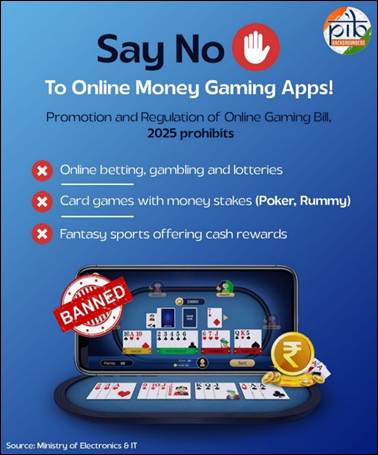
- 23 Aug 2025
In News:
- The Promotion and Regulation of Online Gaming Bill, 2025, passed by Parliament, represents a landmark intervention in India’s digital policy.
- It seeks to prohibit exploitative online money games while simultaneously promoting e-sports and safe online social games.
- The legislation balances the twin objectives of protecting citizens, especially the middle class and youth, from financial and psychological harm and leveraging the potential of the online gaming industry as a driver of innovation, employment, and global competitiveness.
Rationale for the Bill
- The rapid proliferation of online money gaming platforms has led to addiction, financial ruin, fraud, and even suicides.
- The World Health Organization has classified “gaming disorder” as a health condition, reinforcing the urgency of regulation. According to government estimates, 45 crore people were adversely impacted, with losses exceeding ?20,000 crore.
- These platforms also posed risks of money laundering, terror financing, and cybercrime, exploiting loopholes in existing laws. With most operators based offshore, regulatory gaps persisted. Therefore, the Bill provides a comprehensive legal framework that integrates social protection with sectoral growth.
Understanding the Online Gaming Sector
- E-Sports – Organised competitive digital sports that foster strategy, teamwork, and discipline.
- Online Social Games – Recreational, skill-based, and educational games designed for safe entertainment and learning.
- Online Money Games – Games involving financial stakes, often associated with addiction, fraud, and economic distress.
The Bill encourages the first two categories while imposing a blanket ban on money games.
Key Provisions of the Bill
- Applicability: Extends to all of India, including offshore platforms offering services within India.
- Promotion of E-Sports: Recognised as a legitimate sport; guidelines to be framed by the Ministry of Youth Affairs and Sports, with support for training academies and tournaments.
- Encouragement of Social/Educational Games: Central Government to register safe games and develop platforms for digital literacy and skill-building.
- Ban on Online Money Games: Prohibition on offering, advertising, or facilitating such games; banks barred from processing related transactions.
- Online Gaming Authority: A national regulator to classify games, enforce compliance, and address grievances.
- Penalties: Up to 3 years imprisonment and ?1 crore fine for violations; harsher penalties for repeat offenders.
- Corporate Liability: Companies and responsible officers held accountable, with protection for independent directors.
- Investigative Powers: Authorised officers may search, seize, and arrest under the Bharatiya Nagarik Suraksha Sanhita, 2023.
Complementary Legal Measures
- IT Act, 2000 and Intermediary Rules, 2021 – Empower government to block illegal platforms; 1,524 sites already blocked.
- Bharatiya Nyaya Sanhita, 2023 – Criminalises betting and unlawful economic activities.
- GST Act, 2017 – Extends taxation compliance to offshore gaming platforms.
- Consumer Protection Act, 2019 – Prohibits misleading advertisements; celebrities warned against endorsing betting apps.
- Advisories and Education Guidelines – Awareness campaigns on safe gaming for parents, teachers, and youth.
Societal Benefits
- Consumer Protection: Shields families from predatory gaming platforms.
- Youth Empowerment: Expands avenues for e-sports careers and skill-based learning.
- Digital Economy Growth: Positions India as a global gaming hub, driving innovation, exports, and jobs.
- National Security: Prevents misuse of platforms for illicit financing or propaganda.
- Global Leadership: Establishes India as a model for responsible digital regulation.
Conclusion
The Promotion and Regulation of Online Gaming Bill, 2025 reflects India’s attempt to balance innovation with responsibility. By banning harmful money games while nurturing e-sports and educational platforms, the Bill not only safeguards citizens but also unlocks opportunities in the digital economy. It exemplifies a preventive yet progressive regulatory approach, aligning national security, youth welfare, and economic growth. Ultimately, it ensures that technology remains a tool for empowerment, not exploitation.
Indian Ports Bill, 2025
- 22 Aug 2025
In News:
The passage of the Indian Ports Bill, 2025 in both Houses of Parliament marks a landmark reform in India’s maritime governance. The new legislation replaces the colonial-era Indian Ports Act, 1908, bringing in a modern, transparent, and sustainability-driven framework for port development and operations.
Why the Reform was needed
- The 1908 Act, framed under colonial administration, had become outdated in the context of globalised trade, containerisation, and environmental challenges.
- India’s expanding maritime ambitions under the SagarmalaProgramme and Maritime India Vision 2030 required a contemporary law aligned with international standards.
- The reform is also tied to India’s long-term goal of becoming a leading maritime nation by 2047.
Key Objectives of the Bill
- Replace archaic colonial rules with a forward-looking framework.
- Strengthen cooperative federalism through Centre–State partnership in port governance.
- Promote ease of doing business with digitalised and simplified procedures.
- Encourage investment, including PPPs and FDI, by providing regulatory clarity.
- Standardise safety, security, and operational protocols across ports.
- Advance sustainability through green and smart port development.
Major Provisions
1. Institutional Reforms
- Maritime State Development Council (MSDC): A central–state body for coordinated planning, policy harmonisation, and dispute resolution.
- State Maritime Boards: Strengthened to manage non-major ports and oversee expansion/modernisation projects.
- Dispute Resolution Committees: Fast-track mechanisms for sectoral disputes among ports, operators, and users.
2. Operational Reforms
- Tariff Autonomy: Ports empowered to set competitive tariffs under transparent guidelines.
- Integrated Planning: Long-term strategies for cargo handling, multimodal logistics, and coastal shipping.
- Digitalisation: Introduction of the Maritime Single Window, e-clearances, and real-time vessel tracking to cut delays.
- Boost to Coastal & Inland Waterways: Greater connectivity with rail, road, and riverine transport.
3. Environmental & Safety Measures
- Mandatory Waste Reception Facilities and Ballast Water Management systems.
- Compliance with MARPOL (International Convention for the Prevention of Pollution from Ships).
- Emergency Preparedness Plans for accidents, natural disasters, and security threats.
- Promotion of renewable energy, electrification, and shore power systems to cut emissions.
Significance of the Bill
- Economic Growth: Ports as engines of trade, logistics, and job creation.
- Global Alignment: Brings India’s port governance on par with leading maritime nations.
- Sustainability: Push for eco-friendly, digitally enabled, and climate-resilient ports.
- Cooperative Federalism: Greater state participation ensures balanced and region-specific development.
The Bigger Picture
By integrating institutional, operational, and environmental reforms, the Indian Ports Bill, 2025 seeks to transform Indian ports into world-class hubs of trade and logistics. It not only aligns with global best practices but also supports the Prime Minister’s vision of “Ports for Prosperity”, contributing to India’s emergence as a maritime power by 2047.
First removable Solar Panel System between tracks

- 22 Aug 2025
In News:
Indian Railways has taken a major step towards achieving its net-zero carbon emission target by 2030 with the commissioning of India’s first removable solar panel system between railway tracks at Banaras Locomotive Works (BLW), Varanasi in August 2025.
About the Project
- Length of Installation: 70 metres
- Number of Panels: 28 removable panels
- Capacity: 15 KWp (Power density: 240 KWp/km; Energy density: 960 units/km/day)
- Special Feature: Panels are removable, enabling easy maintenance, emergency clearance, and seasonal adaptation.
- Design: Indigenously developed to be installed between tracks without disrupting rail traffic.
Technical Specifications of Panels
- Dimensions: 2278 mm × 1133 mm × 30 mm
- Weight: 31.83 kg per panel
- Type: 144 half-cut mono crystalline PERC bifacial collar cells (multi-bus bar)
- Efficiency: 20.15%
- Maximum Voltage: 1500V; Open Circuit Voltage (Voc): 49.71V
Significance
- Green Energy Transition: Promotes sustainable transport by reducing dependency on fossil fuels and cutting carbon footprint.
- Innovative Space Utilisation: Uses the space between tracks, avoiding land acquisition. Potential estimated at 3.5 lakh units/year/km of track. With IR’s 1.2 lakh km track length, the scalability is massive.
- Economic Efficiency: Supports auxiliary energy needs of railway units, lowering operational costs.
- Replicability: Being a pilot project, it serves as a model for adoption across Indian Railways.
Other Recent Railway Developments
- Green Logistics: In August 2025, the first salt-loaded freight rake from Sanosara (Bhuj–Naliya section) to Dahej carried 3,851.2 tonnes of industrial salt over 673.57 km, generating ?31.69 lakh in freight revenue. This initiative boosts regional industry and expands rail freight solutions.
- Electrification Innovation: Western Railway commissioned the country’s first 2×25 kV Electric Traction System at the Nagda–Khachrod section (Ratlam Division). Powered by two Scott-connected 100 MVA transformers, it enhances efficiency in overhead equipment (OHE) supply, marking a leap in electrification infrastructure.
Broader Context
- Indian Railways is rapidly expanding its solar adoption strategy, aligning with the National Solar Mission and Sustainable Development Goal (SDG-7: Affordable and Clean Energy).
- This innovation aligns with India’s climate commitments under the Paris Agreement and helps advance the country’s energy transition pathway.
Water-Scarce Districts in India
- 22 Aug 2025
In News:
Water, being a State subject, places the responsibility for augmentation, conservation, and efficient management primarily on State Governments. However, the Central Government supplements efforts through technical and financial support. Recent assessments by the Central Ground Water Board (CGWB) highlight the growing challenge of water scarcity in India.
Water-Scarce Districts in India
- The “National Compilation of Dynamic Ground Water Resources of India, 2024” jointly prepared by CGWB and State Governments, categorises districts based on groundwater status.
- Classification:
- Over-exploited: 102 districts
- Critical: 22 districts
- Semi-critical: 69 districts
- Total water-stressed districts:193
- Causes of Stress: Over-extraction for agriculture, rapid urbanisation, industrial demand, erratic monsoons, and climate variability.
- Geographic Spread: Punjab, Haryana, Rajasthan, Tamil Nadu, and Karnataka are among the most affected.
Government Initiatives
1. Jal Shakti Abhiyan (JSA) – 2019 onwards
- A mission-mode campaign for water conservation in 256 water-stressed districts.
- Scaled up nationwide with the tagline: “Catch the Rain – Where it Falls, When it Falls.”
2. Thematic Focus under JSA: Catch the Rain (CTR)
- 2023 – Source Sustainability for Drinking Water: Focused on 150 districts identified by Jal Jeevan Mission.
- 2024 – Nari Shakti se Jal Shakti: Focused on 151 districts identified by CGWB, highlighting women’s role in water management.
- 2025 – Jal Sanchay Jan Bhagidari: Focused on 148 districts, emphasising community participation, inter-sectoral convergence, and innovative financing.
3. Institutional Mechanism
- Central Teams: Comprising Central Nodal Officers (Additional Secretary/Joint Secretary level) and Technical Officers from agencies like CWC, CGWB, NIH, CSMRS, CWPRS, etc., for field monitoring and technical support.
- State Nodal Officers: Oversee campaign execution at state level.
- 148 Central Nodal Officers appointed for high-focus districts in JSA: CTR 2025–26.
Significance of Water Scarcity Data
- Drinking Water Security: Ensures reliable access in rural and urban areas.
- Climate Adaptation: Builds resilience against droughts and erratic rainfall.
- Policy Planning: Provides evidence for programmes such as Jal Jeevan Mission, Atal Bhujal Yojana, and achieving SDG 6 (Clean Water and Sanitation).
- Public Awareness & Participation: Encourages community-led water conservation for sustainable outcomes.
State of Food Security and Nutrition in the World 2025
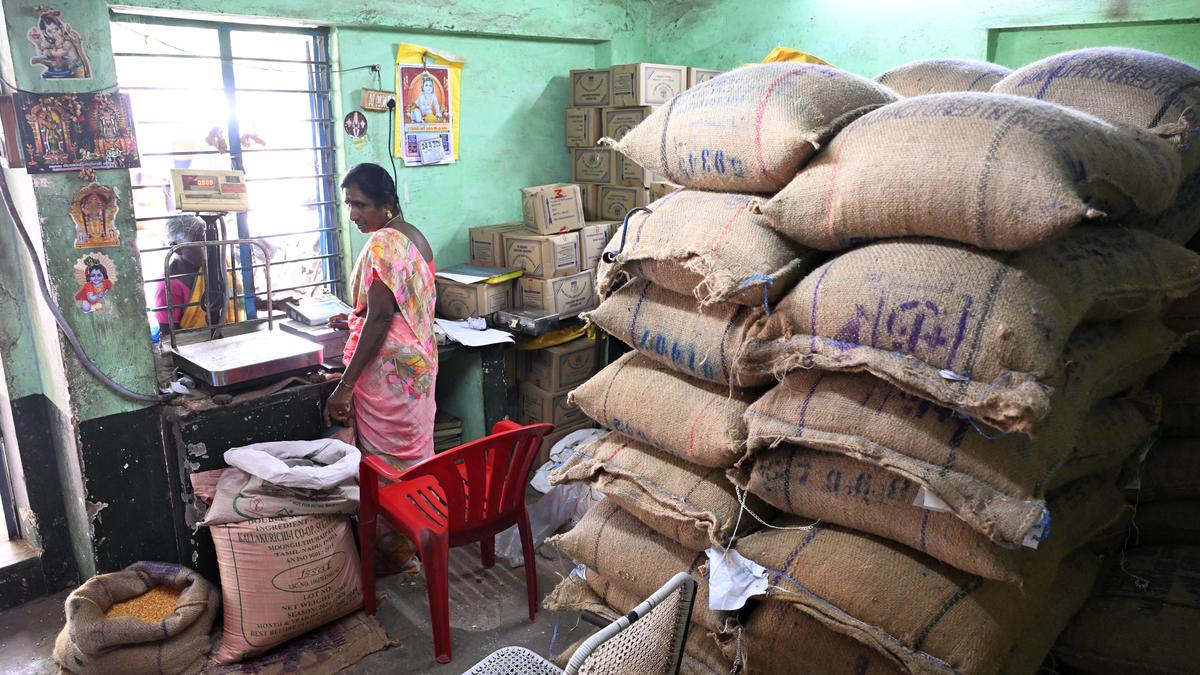
- 22 Aug 2025
In News:
According to the UN’s “State of Food Security and Nutrition in the World 2025”, global undernourishment decreased to 8.2% (673 million individuals) in 2024, down from 8.5% in 2023.
India has been instrumental in this turnaround—its prevalence of undernourishment fell from 14.3% (2020–22) to 12% (2022–24), equating to 30 million fewer hungry people. These outcomes underscore India’s unique role in advancing SDG 2: Zero Hunger globally.
Defining Hunger: Layers and Causes
- Undernourishment: Insufficient calorie intake.
- Malnutrition: Poor diet quality lacking protein and essential micronutrients.
- Hidden Hunger: Micronutrient deficiencies (iron, iodine, vitamin A, zinc).
Root Causes:
- Economic barriers: Poverty limits access to nutritious food (NITI Aayog Index: ~11.3% multidimensionally poor).
- Agricultural inefficiencies: Fragmented holdings, climate variability, poor irrigation, and 13% post-harvest losses.
- High food costs: A nutritious diet remains unaffordable for over 60% of Indians.
- Weak infrastructure: Poor cold storage and logistics aggravate food wastage.
- Health and sanitation challenges: NFHS-5 (2019–21): 35.5% of children under five are stunted; 19.3% are wasted.
- Macro-disruptions: Global conflicts, pandemics, and climate shocks affect food systems, impacting India too.
India’s Strategic Interventions: From Policies to Systems
- Public Distribution System (PDS) Reforms
- Extensive digital overhaul: Aadhaar-based targeting, biometric authentication, real-time inventory tracking, and ONORC (One Nation One Ration Card) ensuring portability and inclusion for migrants and the vulnerable.
- Served over 800 million beneficiaries during COVID-19—a monumental welfare scaling.
- Emphasis on Nutrition Over Mere Calories
- Continued unaffordability of healthy diets (60%+ can’t afford) due to price inflation and weak linkages.
- Nutrition-centric interventions:
- PM POSHAN (2021): Expanded mid-day meals into nutrition-sensitive programs.
- ICDS & POSHAN Abhiyaan: Enhanced focus on dietary diversity and maternal-child health.
- AnaemiaMukt Bharat: Tackles widespread anaemia among women and children.
- Agrifood System Transformation
- Promote nutrient-dense food affordability (pulses, fruits, vegetables, animal-source proteins).
- Address 13% food loss via upgraded cold-chain infrastructure and logistics.
- Support women-led enterprises and FPOs, especially in climate-resilient, biofortified crop cultivation.
- Digital Innovations in Agriculture: Tools such as AgriStack, e-NAM, and geospatial platforms enhance market access, planning, and transparency.
Strategies for Sustainable Impact
|
Strategy |
Actions |
|
Nutrition-centric policy shift |
Fortify staples, subsidise nutrient-rich foods (pulses, eggs, milk) |
|
Infrastructure strengthening |
Upgrade cold storage, logistics, and digital post-harvest systems |
|
Inclusive economy |
Scale women-led food enterprises, FPOs, and biofortified crop cultivation |
|
Digital expansion |
Broaden use of AgriStack, e-NAM, geospatial tools for planning & targeting |
|
Urban nutrition resilience |
Launch community kitchens, food banks, awareness drives |
|
Global sharing & leadership |
Replicate ONORC, PDS digitalisation, nutrition models in the Global South |
Overseas Citizens of India (OCI) Scheme
- 22 Aug 2025
In News:
The Ministry of Home Affairs has announced new rules for overseas citizens of India that may impact their future registration or cancellation.
Background
The Overseas Citizens of India (OCI) Scheme was launched in 2005 by the Ministry of Home Affairs (MHA) to strengthen India’s engagement with its diaspora. It provides certain residency, travel, and economic benefits to foreign nationals of Indian origin, while keeping intact India’s constitutional restrictions on dual citizenship.
Key Features of OCI
- Eligibility:
- Persons who were citizens of India on or after 26 January 1950, or their children/grandchildren/great-grandchildren.
- Excludes individuals who have ever been citizens of Pakistan or Bangladesh, and their descendants.
- Benefits:
- Visa-free travel: Lifelong, multiple-entry, multi-purpose visa to India.
- Economic & Educational Rights: Can pursue education, invest in India, and purchase property (except agricultural/plantation land).
- Ease of Residency: Long-term residency without repeated visa applications.
- Restrictions:
- No political rights (cannot vote, contest elections, or hold constitutional posts).
- No ownership of agricultural or plantation land.
New Rules Notified by MHA (2025)
The government has tightened the regulatory framework around OCI registration by amending rules under the Citizenship Act, 1955 (Section 7D).
Fresh Grounds for Cancellation
- Conviction-based: If an OCI cardholder is sentenced to imprisonment for two years or more.
- Charge-sheet-based: If charge-sheeted for an offence punishable with seven years or more.
- Applicability: These provisions apply irrespective of where the conviction or charge-sheet occurs (India or abroad), provided the offence is recognised under Indian law.
Existing Grounds (already under law)
An OCI card can also be cancelled if the person:
- Obtained registration through fraud, misrepresentation, or concealment of facts.
- Has shown disaffection towards the Indian Constitution.
- Has engaged in unlawful trade or communication with an enemy during war.
- Acts against the sovereignty, integrity, security of India, or its friendly relations with other countries/public interest.
- Within five years of registration, is sentenced to imprisonment for two years or more.
Significance of the Amendment
- Strengthens legal accountability of OCI cardholders.
- Ensures parity of standards between domestic and overseas citizens regarding serious offences.
- Reinforces national security and constitutional safeguards while maintaining diaspora ties.
Antitrisuloides catocalina
- 21 Aug 2025
In News:
Scientists have recently recorded the presence of the rare moth species Antitrisuloides catocalina at the Choolannur Peafowl Sanctuary in Palakkad district, Kerala, marking its first documented occurrence in the Western Ghats.
About Antitrisuloides catocalina
- Belongs to the Noctuidae family and genus Antitrisuloides, which has only two known species worldwide.
- It is a rare nocturnal moth, earlier reported only from Northeast India.
- The specimen identified in Kerala has been confirmed as the subspecies Antitrisuloides catocalina cyclica.
- Its discovery extends the known range of the species and highlights the hidden diversity of moth fauna in the Western Ghats.
About Choolannur Peafowl Sanctuary
- Popularly known as Mayiladumpara.
- Located in Palakkad district, Kerala.
- Established in 1996, it is the only peacock sanctuary in Kerala and the first of its kind in India.
- Dedicated exclusively to the breeding and conservation of peafowls.
- Named in memory of K.K. Neelakantan (Induchoodan), renowned ornithologist and nature writer, who hailed from the nearby village of Kavassery.
Significance of the Discovery
- Expands the documented geographical distribution of A. catocalina.
- Reinforces the role of the Western Ghats as a biodiversity hotspot with high levels of endemism and undocumented species.
- Highlights the importance of systematic surveys in lesser-studied taxa like moths, which can act as indicators of ecosystem health.
Damselfly Species
- 21 Aug 2025
In News:
Researchers have discovered two new species of damselflies in the Western Ghats—Konkan Shadowdamsel from Maharashtra’s Sindhudurg district and Crimson Shadowdamsel (Protosticta sanguinithorax) from Kerala’s Thiruvananthapuram district. The findings were published in the international journal Zootaxa.
About the New Species
- Group: Both belong to the genus Protosticta, commonly called Shadowdamsels, which prefer shaded forest habitats and pristine streams.
- Physical Traits:
- Crimson Shadowdamsel → reddish body.
- Konkan Shadowdamsel → coffee-brown ground colouration.
- Previously, these were mistaken for the Red-spot Shadowdamsel (Protosticta sanguinostigma), described over a century ago from the Nilgiris, which is jet black in colour.
- Identification: Differentiation was confirmed using high-resolution microscopy and molecular analysis of the COI gene, a standard marker for species classification.
- Distribution: Both species are endemics with very restricted microhabitats in the Western Ghats, often outside protected areas.
Ecological Importance
- Shadowdamsels are considered bioindicators:
- Found only in pristine forests with good canopy cover and unpolluted streams.
- Their presence reflects the ecological health of habitats.
- Many species are microendemics, restricted to small hill ranges, making them highly vulnerable to habitat disturbance.
- Current threats include expansion of plantations, deforestation of shade trees, and loss of natural streams.
Damselflies: A Brief Overview
- Belong to the order Odonata, along with dragonflies.
- Characteristics: slender body, delicate net-veined wings, weak flight.
- Habitat: shallow freshwater ecosystems.
- Difference from dragonflies: generally smaller, more fragile, and weaker fliers.
APAAR ID
- 21 Aug 2025
In News:
The Central Board of Secondary Education (CBSE) has made it mandatory for students to submit their APAAR ID during board exam registration, beginning with the 2026 board examinations. This marks a major step in integrating India’s education system under the Digital Public Infrastructure for Education (DPIE).
What is APAAR ID?
- Full Form: Automated Permanent Academic Account Registry.
- Origin: Envisioned under the National Education Policy (NEP), 2020.
- Nature: A unique, permanent 12-digit identification number assigned to every student from pre-primary to higher education.
- Function: Tracks a student’s entire academic journey, consolidating degrees, report cards, scholarships, awards, and credits.
- Integration:
- Linked to Aadhaar for authentication.
- Records stored in DigiLocker for easy and secure access.
- Generated through the Unified District Information System for Education Plus (UDISE+).
- Vision: Embodies the principle of “One Nation, One Student ID”, serving as a lifelong academic passport.
Objectives of APAAR
- Unified Academic Record – Create a lifelong, universally accessible digital database of academic achievements.
- Seamless Transfers – Facilitate smooth migration of students across schools and institutions.
- Transparency & Verification – Eliminate fake certificates and duplication through verifiable digital records.
- Policy Support – Aid educational policymaking and data-driven governance by maintaining standardized records.
- Student Empowerment – Provide students easy access to academic documents via DigiLocker.
Why is CBSE Making APAAR Mandatory?
- Until now, CBSE schools submitted student lists for Class 10 and 12 exams with registration details in Classes 9 and 11.
- There was no standardised identity system, causing inconsistencies and lack of verifiability.
- Linking APAAR ID with registration ensures accuracy, transparency, and elimination of duplication in student records.
- The Ministry of Education has mandated APAAR adoption as part of DPIE for improved data management and transparency.
Concerns and Safeguards
- Concerns Raised: Parents have expressed fears of misuse of personal data and privacy breaches.
- Government’s Assurance: Information will only be accessible to authorized educational entities—such as UDISE+, scholarship agencies, recruitment boards, and institutions—and strictly for academic purposes.
Significance
- APAAR will transform academic governance by creating a single, verifiable, lifelong academic identity.
- It will help students, institutions, and policymakers by streamlining record-keeping, enabling mobility, and ensuring trust in credentials.
- In the long term, it could become the backbone of India’s digital education ecosystem, aligned with NEP 2020’s vision of inclusivity, efficiency, and accountability.
RBI has released a report on the FREE-AI
- 21 Aug 2025
In News:
The Reserve Bank of India (RBI) has released the Framework for Responsible and Ethical Enablement of Artificial Intelligence (FREE-AI) Committee Report, marking a major step in shaping ethical, transparent, and sustainable AI adoption in India’s financial sector. The framework seeks to balance innovation with risk mitigation, ensuring that the transformative power of AI is harnessed without compromising trust, fairness, or safety.
RBI’s 7 Sutras for Responsible AI in Finance
The FREE-AI framework is built on seven guiding principles (Sutras):
- Trust is the Foundation – AI must be reliable, transparent, and inspire public confidence.
- People First – AI should empower human decision-making while safeguarding dignity, inclusion, and citizen interest.
- Innovation over Restraint – Encourage responsible innovation without excessive restrictions.
- Fairness and Equity – AI outcomes must be unbiased and equitable.
- Accountability – Responsibility for AI decisions rests with deploying entities, with clear lines of answerability.
- Understandable by Design – Systems must be interpretable and explainable to users, auditors, and regulators.
- Safety, Resilience, and Sustainability – AI must be secure, adaptable, and capable of delivering long-term benefits.
India’s Policy Developments
- MuleHunter AI – Developed by RBI Innovation Hub to detect mule accounts and curb digital frauds.
- Digital Lending Rules – Mandate auditable AI-driven credit assessments with human oversight and grievance redressal.
- SEBI’s 2025 Guidelines – Propose responsible AI use in Indian securities markets.
- IndiaAI Mission – Aims to boost AI innovation, research, and computational infrastructure.
RBI’s Recommendations under FREE-AI
The Committee laid down 26 recommendations across six pillars:
- Infrastructure – Establish high-quality financial data infrastructure, integrated with AI Kosh.
- Innovation Enablement – Create an AI Innovation Sandbox for testing models with anonymised data, ensuring compliance with AML, KYC, and consumer protection norms.
- Consumer Protection & Security – Periodic AI red-teaming, incident reporting frameworks, and good-faith disclosures.
- Capacity Building – Structured AI governance training at all institutional levels; knowledge sharing across REs (regulated entities).
- Governance – Oversight frameworks ensuring accountability and transparency in AI deployments.
- Assurance Mechanisms – Standards and audit processes for AI-based systems.
Higher Education Commission of India (HECI)
- 21 Aug 2025
In News:
India’s higher education system is poised for its most significant transformation since independence with the establishment of the Higher Education Commission of India (HECI), a unified regulatory body that will replace the fragmented oversight of University Grants Commission (UGC), All India Council for Technical Education (AICTE), and National Council for Teacher Education (NCTE).
Background & Genesis
- The HECI is a proposed unified regulator intended to replace the existing oversight bodies: UGC, AICTE, and NCTE—tasked with regulating non-technical, technical, and teacher-education domains respectively.
- The concept originates from NEP 2020, which advocates for a "light but tight" regulatory framework governed by one umbrella institution with four independent verticals.
- Originally floated in a 2018 draft bill, the idea regained momentum in 2021 and is currently under drafting, with status updates as recent as July–August 2025.
Objectives & Rationale
- Streamline governance: HECI aims to eliminate overlapping jurisdictions, reduce bureaucratic delays, and improve accountability across higher education institutions.
- Enhance autonomy and innovation: Under NEP 2020’s vision, it seeks to foster institutional independence coupled with data-driven oversight.
- Align with global best practices: The vertical structure (regulation, accreditation, funding, standards) mirrors international examples like the UK's Office for Students and Australia’s TEQSA.
Structural Framework: Four Vertical Councils
As per NEP 2020, HECI will function through four independent verticals:
- National Higher Education Regulatory Council (NHERC): Responsible for regulatory oversight, excluding medical and legal education.
- National Accreditation Council (NAC): Acts as a meta-accrediting body, setting phased benchmarks and ensuring quality across institutions.
- Higher Education Grants Council (HEGC): Will manage funding based on transparent, performance-linked criteria, replacing UGC’s funding role.
- General Education Council (GEC): Tasked with developing the National Higher Education Qualification Framework (NHEQF), defining graduate learning outcomes. It will subsume the NCTE and liaise with other professional standard-setting bodies.
Some sources also mention integration of accreditation entities such as NAAC and NBA into HECI’s accreditation wing, adopting peer-review models.
Legislative Journey & Current Status
- The HECI bill is being prepared following NEP 2020, specifically underwritten by Minister Sukanta Majumdar in July 2025. A Cabinet note is anticipated before formal introduction.
- Finalisation is pending, with no clear date as of mid-2025.
Expected Benefits
- Simplified administration—one regulator instead of multiple authorities.
- Improved transparency and efficiency, eliminating redundancy.
- Promoting global standards, quality enhancements, and integration of interdisciplinary and digital learning.
Gaur
- 20 Aug 2025
In News:
The Palamau Tiger Reserve (PTR), the last stronghold of the Gaur (Bos gaurus) in Jharkhand, has reported an alarming decline in population. Once spread across Saranda, Dalma, Hazaribagh, Gumla, and other forests of the state, Gaurs are now restricted to small and isolated groups in PTR’s northern range.
About Gaur
- Common name: Indian Bison
- Family: Bovidae; largest species of wild cattle.
- Distribution: Native to South and Southeast Asia.
- Preferred habitat:
- Evergreen, semi-evergreen, and moist deciduous forests with grasslands.
- Hilly terrains below 1,500–1,800 m with large, undisturbed forests and reliable water sources.
Conservation Status
- IUCN Red List: Vulnerable
- CITES: Appendix I
- Wildlife Protection Act, 1972: Schedule I
Population Trends in PTR
- 1970s population: ~150
- Recent study: Only 68 individuals remain.
- Demography: Slightly female-biased sex ratio (1:1.32), but very low numbers of juveniles and calves indicate poor recovery.
Ecological Significance
- Important prey species for large predators such as tigers and leopards.
- Herbivory: Helps regulate vegetation dynamics.
- Seed dispersal: Contributes to forest regeneration and ecosystem balance.
Causes of Decline
- Habitat degradation & fragmentation due to human activity.
- Anthropogenic pressures: Rising livestock populations (approx. 1.5 lakh around Betla region).
- Disease transmission from domestic cattle (e.g., foot-and-mouth disease, rinderpest).
- Genetic bottlenecks due to small and isolated herds.
Recovery Efforts in PTR
- Action Plan: “Ecology and Recovery Plan of Gaur in PTR” prepared after two years of research.
- Habitat improvement: Grassland expanded from 190 ha to 400 ha; waterholes secured.
- Security: 40 anti-poaching camps with round-the-clock staff.
- Technology: Use of GPS and modern monitoring systems.
- Disease control: Large-scale livestock vaccination programmes to reduce risks.
- Genetic infusion: Proposal to introduce Gaurs from Kanha Tiger Reserve (Madhya Pradesh) to improve genetic diversity.
About Palamau Tiger Reserve
- Location: Chota Nagpur Plateau, Jharkhand.
- Established: One of the first nine tiger reserves (1973 Project Tiger).
- Area: 1,129 sq km (Core: 414 sq km; Buffer: 715 sq km).
- Protected areas within PTR:
- Palamau Wildlife Sanctuary
- Betla National Park
Moai Statues
- 20 Aug 2025
In News:
A recent study published in the Journal of Cultural Heritage warns that rising sea levels may submerge Easter Island’s iconic Moai statues by 2080, endangering both the island’s cultural heritage and tourism-based economy.
About Moai Statues
- What they are: Massive monolithic statues carved from volcanic rock by the Rapa Nui people, the island’s first Polynesian settlers.
- Time of construction: Approx. 1250–1500 CE (some estimates: 1400–1650 CE).
- Number: Nearly 1,000 statues have been identified.
- Features:
- Tallest statue: ~33 feet high.
- Made primarily of volcanic tuff.
- Carved in the likeness of ancestors.
- Cultural role:
- Built to honor chiefs and important individuals.
- Placed on rectangular stone platforms called ahu, which also served as tombs.
- Each statue has unique traits to represent the person commemorated.
Study Findings
- Researchers used digital twin models and advanced simulations to project flooding risks caused by sea-level rise.
- Results show that by 2080, seasonal waves could reach Ahu Tongariki – the largest ceremonial platform on the island, part of the Rapa Nui National Park (UNESCO World Heritage Site since 1995).
- The flooding could impact 51 cultural assets, including the world-famous Moai statues.
- The study emphasizes the urgency of local community planning to safeguard heritage against climate risks.
Easter Island – Key Facts
- Location: Eastern Pacific Ocean.
- Forms part of the Polynesian Triangle along with Hawaii and New Zealand – the traditional homeland of Polynesian peoples.
- Known globally for its archaeological and cultural significance, particularly the Moai statues.
Mud Waves
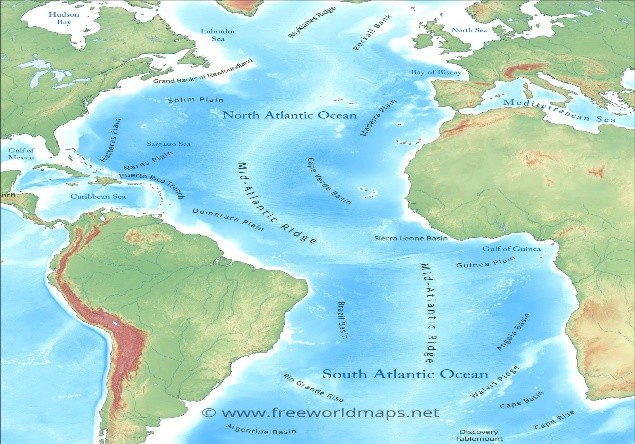
- 20 Aug 2025
In News:
A recent study published in Global and Planetary Change (2025) has uncovered 117-million-year-old mud waves buried nearly 1 km beneath the Atlantic seabed west of Guinea-Bissau. This finding reshapes our understanding of the formation of the Atlantic Ocean, ancient climate patterns, and tectonic shifts during the Cretaceous period.
About Mud Waves
- Definition: Large, rhythmic sedimentary structures formed on the seafloor by persistent bottom currents.
- Age & Size: Approximately 117 million years old; over 1 km long and several hundred meters high.
- Location: Deep seabed, west of Guinea-Bissau, near the Equatorial Atlantic Gateway.
- Composition: Layered sediments preserving evidence of historic ocean circulation.
Formation Process
- Early Atlantic Spillover: Around 117 million years ago, the young North Atlantic Ocean began spilling dense, salty waters into southern basins through the newly formed Equatorial Atlantic Gateway.
- Underwater Avalanches: The influx collided with older, stagnant waters rich in mud and organic matter, triggering massive sediment avalanches.
- Wave Formation: These currents pushed and piled up sediments into wave-like structures, which solidified into permanent mud waves over millions of years.
Scientific Significance
- Rewrites Ocean History: Suggests Atlantic waters circulated much earlier than previously thought.
- Climate Insights: Provides evidence of Cretaceous climate shifts and ancient carbon cycles.
- Tectonic Implications: Offers clues to plate movements shaping Earth’s geography during the breakup of Gondwana.
About the Atlantic Ocean
- Size & Shape: Second-largest ocean after the Pacific; distinctive ‘S’-shape.
- Major Features:
- Mid-Atlantic Ridge: 14,000 km long, ~4 km high, central seafloor mountain range.
- Continental Shelves: Widest along NE America and NW Europe.
- Islands & Seamounts: Azores, Canary Islands, Bermuda, Cape Verde.
- Trenches: Puerto Rico Trench, Romanche Trench (less prominent than Pacific trenches).
- Marginal Seas: Hudson Bay, Gulf of Mexico, Baltic Sea.
India Semiconductor Mission
- 20 Aug 2025
In News:
The Union Cabinet has cleared four new semiconductor manufacturing projects worth ?4,600 crore in Odisha, Punjab, and Andhra Pradesh under the India Semiconductor Mission (ISM). With this, the total number of approved projects under ISM has reached ten across six states, attracting cumulative investments of nearly ?1.60 lakh crore.
Details of Newly Approved Units
- SiCSem Pvt. Ltd. (Odisha):
- In partnership with UK-based Clas-SiC Wafer Fab Ltd.
- India’s first commercial compound semiconductor fabrication unit focused on Silicon Carbide (SiC) devices.
- Capacity: 60,000 wafers and 96 million packaged units annually.
- 3D Glass Solutions Inc. (Odisha):
- Will establish a vertically integrated packaging and embedded glass substrate unit.
- Focus: 3D Heterogeneous Integration modules.
- ASIP Technologies (Andhra Pradesh):
- Joint venture with APACT Co. Ltd., South Korea.
- Annual capacity: 96 million units.
- Applications: Mobile phones, set-top boxes, automobiles, and other electronic devices.
- Continental Device India Pvt. Ltd. (Punjab):
- Brownfield expansion of its Mohali facility.
- Focus: High-power discrete devices – MOSFETs, IGBTs, Schottky diodes, and transistors (using both silicon and SiC).
- Capacity: 158.38 million units annually.
Production from these units is expected to commence within the next 2–3 years.
Progress under ISM
- Launch Year: 2021
- Nodal Ministry: Ministry of Electronics and Information Technology (MeitY)
- Objective: Establish a self-reliant semiconductor and display ecosystem in India.
- Support: Incentive package of ?75,000 crore for fabs, ATMP/OSAT, compound semiconductor plants, and display fabs.
- Capacity Building: Target to train 60,000+ skilled professionals.
- Strategic Significance: Reduce import dependency, boost Atmanirbhar Bharat, and make India a global semiconductor hub.
Major Ongoing Projects under ISM
- Tata-PSMC Fab (Dholera, Gujarat): ?91,526 crore investment; capacity of 50,000 wafers/month for automotive and AI; operational by 2026.
- Micron ATMP (Sanand, Gujarat): ?22,900 crore investment; focus on DRAM and NAND packaging; expected by late 2025.
- Tata TSAT OSAT (Jagiroad, Assam): Output of 48 million chips/day.
- Kaynes OSAT (Sanand, Gujarat): Capacity of 6 million chips/day for telecom and industrial use.
- HCL–Foxconn JV (Uttar Pradesh): To produce 36 million display driver chips/month by 2027.
Burevestnik Missile
- 20 Aug 2025
In News:
According to recent reports, Russia is preparing to conduct fresh trials of the 9M730 Burevestnik – a nuclear-powered cruise missile that has often been described as a “unique” and formidable addition to Moscow’s strategic arsenal.
About the Burevestnik
- The term Burevestnik translates to “storm petrel” in Russian.
- It is a ground-launched, nuclear-powered cruise missile, also capable of carrying a nuclear warhead.
- The system was first unveiled by the Russian President in 2018, as part of six advanced strategic weapons.
- NATO has designated it as SSC-X-9 “Skyfall.”
- In theory, its nuclear propulsion allows it to circle the globe multiple times before striking a target, making it an unprecedented strategic weapon.
Key Features
- Nuclear Propulsion: The missile uses a compact nuclear reactor that heats the surrounding air for thrust.
- Extended Range: Unlike traditional engines restricted by fuel capacity, the nuclear design enables a potential range of up to 22,000 km (14,000 miles).
- Low-Altitude Flight: The system is engineered to fly close to the ground, significantly reducing its detectability by conventional air-defence radars.
- Strategic Significance: Its combination of long endurance and stealthy trajectory poses challenges to existing missile defence systems.
SabhaSaar
- 19 Aug 2025
In News:
The Government of India is set to launch ‘SabhaSaar’, an Artificial Intelligence (AI)-based tool designed to automatically generate structured minutes of gram sabha meetings, thereby enhancing transparency, uniformity, and efficiency in local governance. The tool will be first rolled out in Tripura on Independence Day (August 15) and later extended to other states.
What is SabhaSaar?
- Gram Sabha: It is the primary body of the Panchayati Raj system, consisting of all registered voters of a gram panchayat. Gram sabhas are mandated to meet at least four times a year (January 26, May 1, August 15, and October 2).
- SabhaSaar: An AI tool that converts audio and video recordings of gram sabha meetings into structured minutes, ensuring uniformity across the country.
- Access: Panchayat officials can upload recordings using their e-GramSwaraj login credentials.
Key Features
- AI-driven transcription &summarisation: Generates transcripts, translates into the chosen language, and prepares concise summaries.
- Language inclusivity: Built on Bhashini, the government’s AI-powered language platform, it supports transcription in all major Indian languages (Hindi, Bengali, Tamil, Telugu, Marathi, Gujarati) and English.
- Standardisation: Ensures uniformity of gram sabha documentation nationwide.
- Ease of governance: Facilitates instant access to insights for panchayats, administrative bodies, and rural development projects.
Associated Reforms for Gram Sabhas
- Panchayat NIRNAY Portal: A real-time monitoring system for gram sabha meetings, enabling scheduling, agenda notification to citizens, decision tracking, and transparency in implementation.
- Recent progress: In 2024–25, more than 10,000 gramsabha meetings were held through the NIRNAY platform, with Punjab, Andhra Pradesh, Telangana, and Bihar leading in usage.
Significance
- Governance efficiency: Automates and digitises record-keeping, reducing errors and delays.
- Transparency & accountability: Ensures that decisions of gram sabhas are properly recorded and accessible.
- Public participation: Facilitates better citizen awareness and engagement in local governance.
- Bridging digital divide: Through Bhashini, makes governance accessible across linguistic barriers.
Cheque Truncation System (CTS)
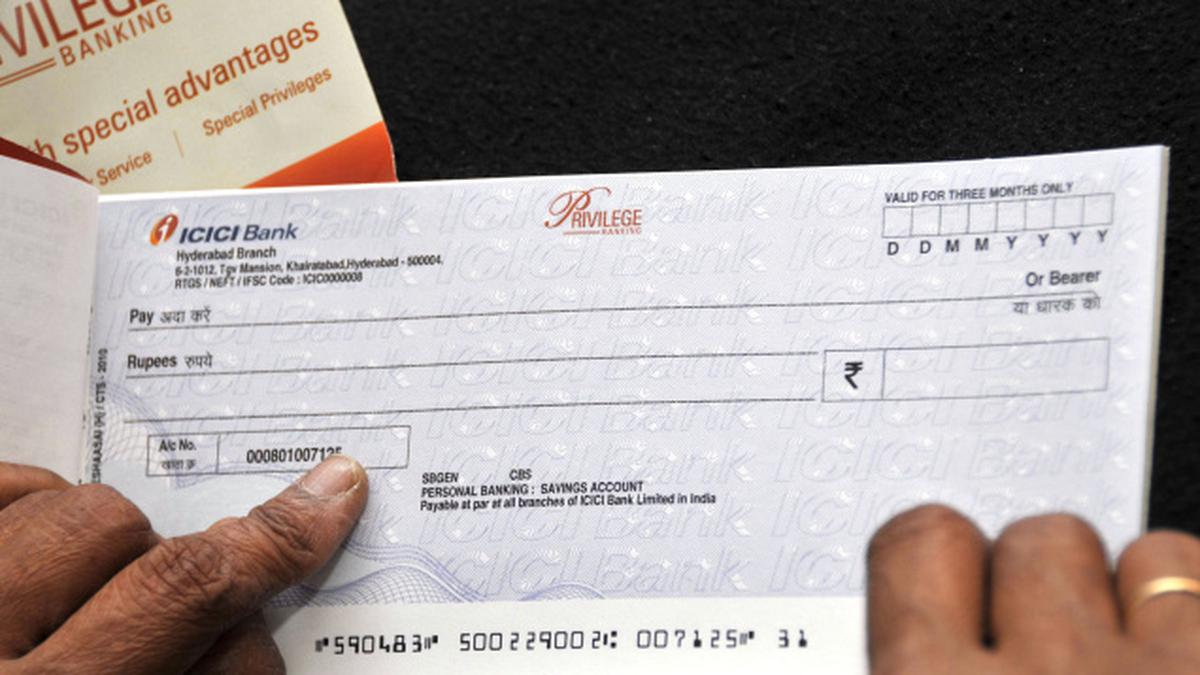
- 19 Aug 2025
In News:
The Reserve Bank of India (RBI) has announced the transition of the Cheque Truncation System (CTS) from batch processing to a continuous clearing mechanism, with settlement on realisation, to be implemented in two phases. This reform aims to further enhance efficiency, reduce delays, and strengthen the digitalisation of cheque-based transactions.
About Cheque Truncation System (CTS)
- Introduced by RBI to speed up cheque clearance and minimise physical movement of instruments.
- Process: Physical cheques are truncated at the collecting bank; only cheque images and MICR data are transmitted electronically.
- Security: Protected by a PKI-based security architecture with dual access controls, user authentication, crypto box, and smart card interfaces.
- CTS-2010 Standards: Only compliant instruments are accepted, ensuring:
- Use of specified paper quality, watermark, and invisible-ink logos.
- Mandatory minimum-security features like void pantograph.
- Standardised cheque design for uniform image-based processing.
Current vs. New System
- Current CTS: Clearing cycle takes up to two working days.
- New System (Continuous Clearing):
- Cheques will be cleared within hours of submission.
- Settlement will occur on realisation basis rather than at fixed batch intervals.
Benefits
- Faster Settlement: Realisation of cheque proceeds on the same day.
- Efficiency Gains: Reduced bottlenecks and delays in processing.
- Cost Savings: Eliminates costs linked to physical cheque movement.
- Security & Reliability: Enhanced authentication safeguards against fraud.
- Better Data Management: Easy storage and retrieval of digital records via a centralised archival system.
- Customer Convenience: Shorter clearing cycles improve banking efficiency for individuals and businesses.
NashaMukt Bharat Abhiyaan (NMBA)

- 19 Aug 2025
In News:
India has intensified efforts to combat substance abuse through community engagement and national-level programmes. Recently, a “Drug-Free India” campaign was held in Mysuru, complementing the larger framework of the NashaMukt Bharat Abhiyaan (NMBA), which has completed five years since its launch in 2020.
About NashaMukt Bharat Abhiyaan (NMBA)
- Launched: 15 August 2020.
- Nodal Ministry: Ministry of Social Justice & Empowerment (MoSJE).
- Objective:
- Reduce drug demand through awareness, prevention, and education.
- Strengthen community response by mobilising youth, women, and local institutions.
- Provide rehabilitation and treatment support to victims of addiction.
Key Features
- Targeted Districts: Implemented in 272 high-risk districts identified through national surveys and Narcotics Control Bureau (NCB) data.
- Three-Pronged Strategy:
- Supply Reduction: Led by NCB.
- Demand Reduction: Community outreach under MoSJE.
- Treatment: Medical interventions coordinated by the Health Department.
- Community-Based Model: District and state committees headed by senior officials ensure localised implementation.
- Technology Integration: Dedicated NMBA app, website, and social media platforms for wider outreach.
- Mass Mobilisation: Partnerships with civil society organisations like Art of Living, Brahma Kumaris, and ISKCON for awareness drives.
Impact
- Public Health: Over 18 crore citizens sensitised, with a focus on youth and women.
- Capacity Building: More than 20,000 Master Volunteers trained nationwide.
- Social Stability: Contributed to reducing drug-related crime and strengthening the social fabric.
- Awareness Events: Local campaigns such as the Drug-Free India drive in Mysuru amplify the Abhiyaan’s outreach at the grassroots level.
Significance
- Strengthens India’s commitment to tackling the drug menace through prevention, rehabilitation, and community participation.
- Complements India’s obligations under international conventions on narcotic drug control.
- Directly contributes to SDG 3 (Good Health and Well-being) and SDG 16 (Peace, Justice, and Strong Institutions).
Human African Trypanosomiasis (HAT)
- 19 Aug 2025
In News:
The World Health Organization (WHO) has certified Kenya as free from human African trypanosomiasis (HAT), or sleeping sickness, marking it the 10th African nation to eliminate the disease as a public health problem (August 2025). This is Kenya’s second victory against a Neglected Tropical Disease (NTD) after eliminating guinea worm disease in 2018.
About Human African Trypanosomiasis (HAT)
- Cause: A vector-borne parasitic disease caused by the protozoa Trypanosoma brucei.
- Vector: Spread by the bite of infected tsetse flies (Glossina spp.).
- Types:
- T.b.gambiense (West & Central Africa): Chronic, slow-progressing form.
- T.b. rhodesiense (East & Southern Africa): Acute, fast-progressing form (present in Kenya).
- Symptoms:
- First stage: Fever, headache, joint pain, swollen lymph nodes.
- Second stage: Parasites invade the central nervous system → confusion, behavioural changes, loss of coordination, and disrupted sleep cycle.
- Fatal if untreated, though effective drugs exist (pentamidine, suramin, fexinidazole, nifurtimox–eflornithine, melarsoprol), supplied free by WHO.
Kenya’s Journey
- History: First detected in early 20th century; no indigenous cases since 2009. Last imported cases reported in 2012 (Masai Mara).
- Control measures:
- Strengthened disease surveillance in 12 facilities across 6 endemic counties (Busia, Siaya, Kisumu, Homa Bay, Migori, Kwale).
- Upgraded laboratories, diagnostic capacity, and trained personnel.
- Controlled tsetse flies and animal trypanosomiasis with veterinary support.
- Partnerships: WHO, Kenya’s Ministry of Health, FIND (Foundation for Innovative New Diagnostics), and community engagement played key roles.
Global Context
- WHO’s NTD Road Map 2021–2030: Target—100 countries to eliminate at least one NTD by 2030.
- So far, 57 countries (including Burundi, Senegal) have achieved elimination of at least one NTD.
- However, cuts in international funding threaten progress, risking resurgence in vulnerable areas.
- Success is critical for meeting SDG 3 (Good Health and Well-being), particularly the target of ending epidemics of NTDs by 2030.
Bhu-Neer Portal
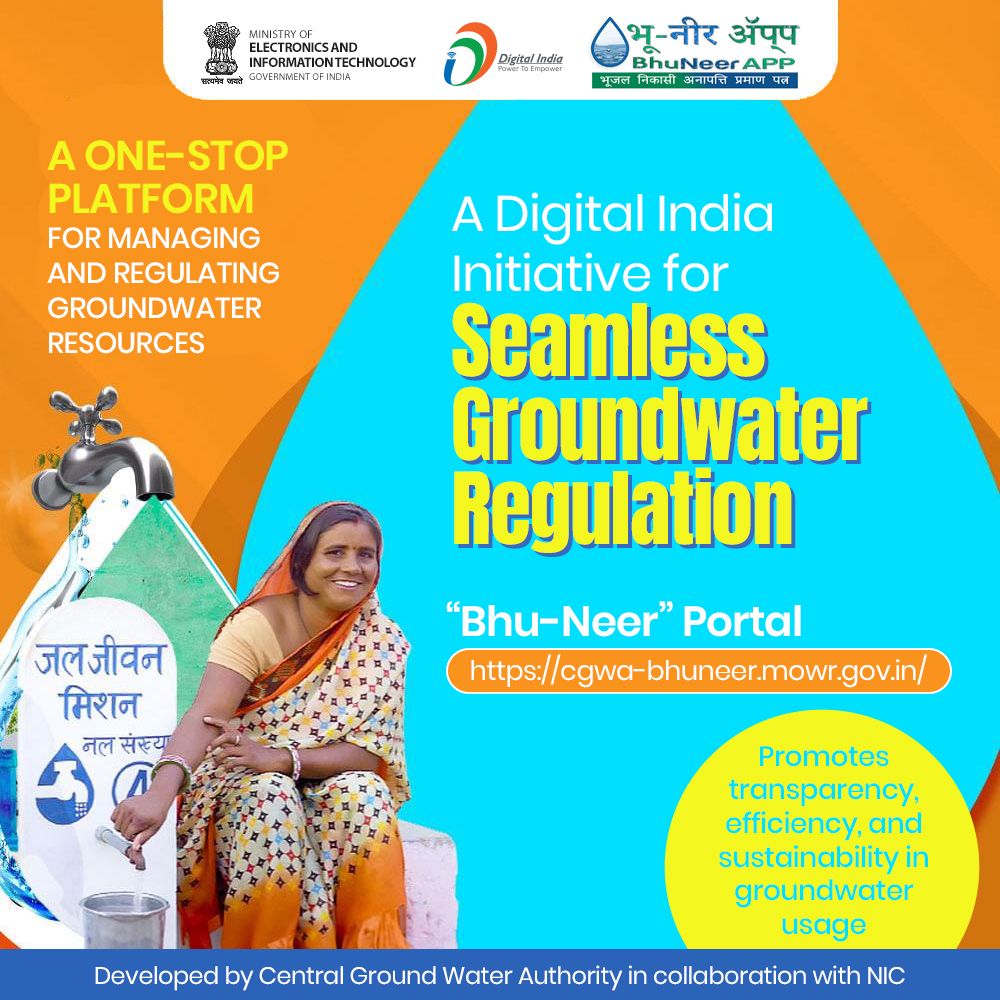
- 19 Aug 2025
In News:
The Bhu-Neer Portal, launched in 2024 during the 8th India Water Week by the Ministry of Jal Shakti, is a digital initiative developed by the Central Ground Water Authority (CGWA) in collaboration with the National Informatics Centre (NIC). It represents a significant reform in the regulation and management of groundwater extraction in India.
Background:
- CGWA: Constituted under the Environment (Protection) Act, 1986, regulates and controls the development and management of groundwater resources in the country.
- NIC: Established in 1976, under MeitY, it supports e-Governance and digital platforms for sustainable development.
- The portal replaces the earlier NOCAP system, offering a more transparent, user-friendly, and efficient mechanism for granting No Objection Certificates (NOCs) for groundwater abstraction.
Objectives:
- To provide a centralised, transparent, and efficient platform for groundwater regulation.
- To ensure compliance with the Guidelines of September 24, 2020 on groundwater abstraction.
- To promote sustainability by integrating water conservation measures such as rooftop rainwater harvesting and sewage treatment plants.
Key Features:
- PAN-based Single ID System for ease of access and integration with payment gateways.
- QR code-enabled NOCs for secure and quick verification.
- Online charges calculator for transparency in fee structures.
- Eligibility checker before filing applications.
- Query module for real-time interaction with CGWA officials.
- SMS and email alerts to track application status.
- Centralised database for groundwater compliance, policies, and monitoring.
Scope:
- Applicable in 19 States/UTs where groundwater regulation is under CGWA’s jurisdiction.
- Covers industries, infrastructure, and mining projects seeking to abstract groundwater.
Significance:
- Strengthens enforcement of groundwater guidelines, curbing indiscriminate extraction.
- Enhances Ease of Doing Business by streamlining NOC procedures.
- Promotes water-use efficiency and sustainable management of depleting groundwater resources.
- Facilitates greater transparency and accountability in resource governance.
Awareness & Outreach:
- The Ministry has organized workshops with industry bodies and Public Interaction Programmes (PIPs) to promote adoption of the portal among stakeholders.
Chagas Disease

- 18 Aug 2025
In News:
- Chagas disease, or American trypanosomiasis, is an infection caused by the protozoan Trypanosoma cruzi and is transmitted primarily through the feces of triatomine bugs—commonly known as “kissing bugs.”
- It can also spread via congenital transmission (from mother to child), contaminated food or water, blood transfusion, organ transplant, or during laboratory handling.
- Though initially endemic to South and Central America, and Mexico, the disease has now emerged as a global health concern, partly due to migration and local vector presence in places like the southern United States.
Clinical Progression & Treatment
- Many infected individuals remain asymptomatic initially, but chronic infection can lead to severe cardiac and digestive complications if left untreated.
- In the acute phase, antiparasitic treatment is aimed at eliminating the parasite. In the chronic phase, therapeutic focus shifts to managing symptoms since parasite clearance becomes difficult.
Alarming Underinvestment in R&D
- R&D investment for Chagas disease is startlingly low—accounting for only 0.6% of all neglected disease research globally.
- This share is even smaller when compared to other tropical diseases: less than US$1 million was spent on new drug development in 2007, constituting a mere 0.04% of neglected disease R&D funding.
- Between 2009 and 2018, US$236 million was invested in Chagas-related R&D—just 0.67% of the total neglected disease investment. Only a handful of funders (NIH, industry, Wellcome Trust) accounted for the majority.
- Patent data reflect this disparity, especially in vaccine development—highlighting significant underinvestment relative to the global health threat posed by Chagas.
- To put it in perspective, malaria receives 20 times more funding than Chagas.
Pathways to Progress
- Innovative Therapies: Research shows promise in novel, low-cost immunotherapeutic agents derived from cyanobacteria that may offer safer and more tolerable options than current drugs.
- Campaigns and Advocacy: Initiatives like the “Chagas: Time to Treat” campaign by DNDi (Drugs for Neglected Diseases Initiative) emphasize urgent need for:
- Affordable, pediatric formulations
- Safe, field-ready treatments for chronic phases
- Greater public and private funding for R&D.
Broader Significance and Current Calls to Action
- Chagas disease remains among the most neglected tropical diseases, impacting an estimated 6 million people, causing approximately 12,000 deaths annually, and contributing to over 30,000 new cases each year—mainly in Latin America.
- Effective solutions require:
- Improved surveillance and mandatory case notification systems
- Enhanced training and diagnostic tools for health workers
- Integration of One Health approaches (veterinary, environmental control, and human health) in vector management.
- Investment in neglected disease R&D delivers substantial societal returns—studies suggest $1 spent yields $405 in broader economic and health benefits.
18th International Olympiad on Astronomy and Astrophysics
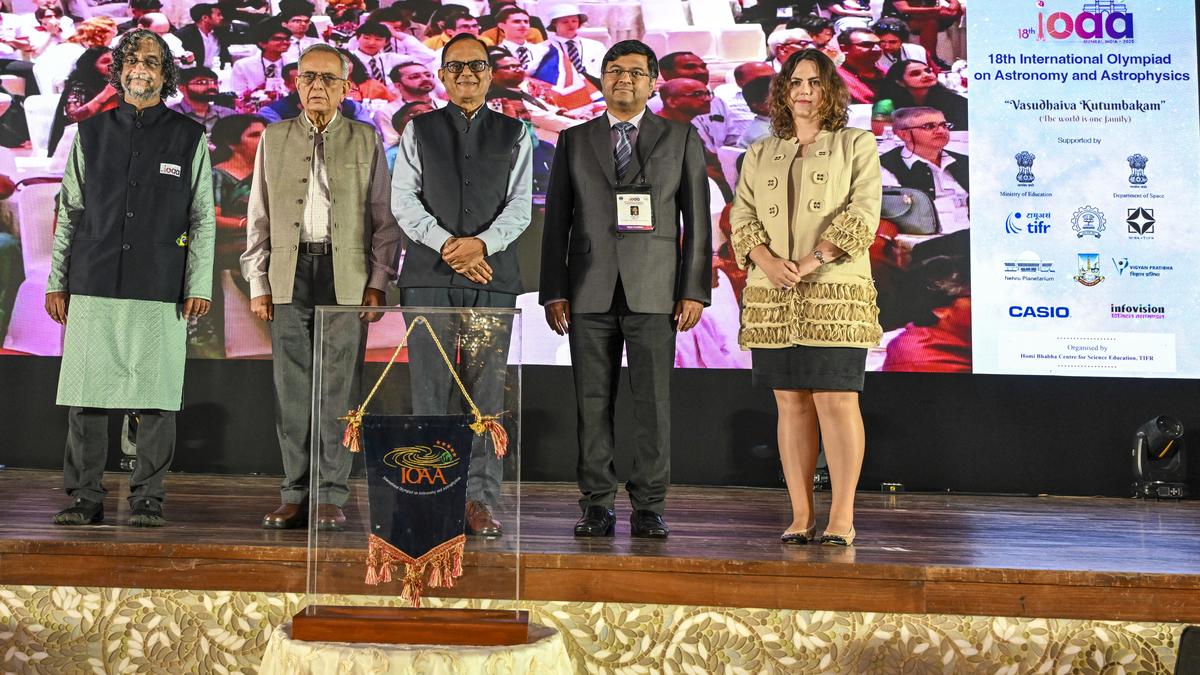
- 18 Aug 2025
In News:
India is hosting the 18th International Olympiad on Astronomy and Astrophysics (IOAA) in Mumbai, Maharashtra, with participation from over 300 young astronomers from 64 countries. The event is jointly organised by the Homi Bhabha Centre for Science Education (HBCSE), Tata Institute of Fundamental Research (TIFR), and the Union Ministry of Education.
About IOAA:
- A premier global competition for high-school students in astronomy, astrophysics, and observational sciences.
- Tests theoretical knowledge, data analysis skills, and observational abilities.
- Objectives:
- Promote scientific thinking and problem-solving in space sciences.
- Encourage international cooperation and cultural exchange.
- Inspire careers in space sciences and research.
- Showcase India’s scientific and technological progress.
Features of the 18th Edition:
- Largest-ever IOAA with record participation from 64 nations.
- Competition includes written exams, data analysis, and night-sky observations.
- Highlighting India’s legacy: From Aryabhatta’s discoveries to modern space missions like Chandrayaan-3 (historic landing near Moon’s South Pole) and Aditya-L1 (India’s first solar observatory).
- Showcasing STEM Empowerment:
- Atal Tinkering Labs benefitting over 10 million students through hands-on STEM learning.
- One Nation One Subscription scheme providing free access to global research journals for students and researchers.
- Global Collaboration: Participation in mega-science projects such as the Square Kilometre Array and LIGO-India.
Significance for India:
- Strengthens India’s global image as a leader in space sciences and STEM education.
- Provides a platform for showcasing India’s scientific achievements and educational initiatives.
- Encourages the next generation to pursue careers in astronomy, astrophysics, and research.
- Aligns with India’s broader vision of linking science, innovation, and human welfare.
UNDP Equator Initiative Award 2025

- 18 Aug 2025
In News:
The Bibi Fatima Women’s Self-Help Group (SHG) from Teertha village, Kundgol taluk, Dharwad district, Karnataka, has won the prestigious Equator Initiative Award 2025. The award, often referred to as the Nobel Prize for Biodiversity Conservation, honours community-led, nature-based solutions for sustainable development.
About the Equator Initiative Award:
- Organiser: United Nations Development Programme (UNDP) under its Equator Initiative.
- Nature: Recognises local and indigenous communities for biodiversity conservation, ecological resilience, and poverty reduction.
- Frequency: Biennial.
- Prize: Includes a cash award of $10,000 (approx. ?8.5 lakh).
- Theme (2025):“Women and Youth Leadership for Nature-Based Climate Action”.
- Eligibility: The initiative must have been active for at least three years, community-based, and contribute to at least two Sustainable Development Goals (SDGs).
In 2025, Bibi Fatima SHG was the only Indian winner, alongside groups from Argentina, Brazil, Ecuador, Indonesia, Kenya, Papua New Guinea, Peru, and Tanzania.
Achievements of Bibi Fatima SHG:
- Formation: Established in 2018 by 15 women, with support from Sahaja Samruddha (NGO), Indian Institute of Millets Research (IIMR, Hyderabad), and CROPS4HD.
- Eco-Friendly Farming: Revived millet-based mixed cropping systems on rainfed lands through natural and climate-resilient farming practices in nearly 30 villages.
- Community Seed Bank: Distributes millet seeds free of cost to farmers, strengthening local seed sovereignty.
- Food & Nutrition Security: Promoted millets to improve dietary diversity and resilience against climate change.
- Women-led Enterprise: Established a solar-powered millet processing unit with support from SELCO Foundation, entirely managed by women.
- Value Addition & Marketing: Produces millet-based products such as rotis and vermicelli, boosting local markets.
- Livelihood Diversification: Expanded into livestock rearing, horticulture, and farmers’ markets, improving incomes of small and marginal households.
- Partnerships: Collaborates with Devadhanya Farmer Producer Company to scale rural, agriculture-based enterprises.
Significance:
- Strengthens the role of women’s leadership in climate action and sustainable agriculture.
- Demonstrates a successful community-driven model for biodiversity conservation, food security, and rural entrepreneurship.
- Aligns with India’s efforts to revive millets (International Year of Millets 2023) and promote climate-resilient farming.
- Advances multiple SDGs – notably SDG 1 (No Poverty), SDG 2 (Zero Hunger), SDG 5 (Gender Equality), SDG 12 (Responsible Consumption and Production), and SDG 13 (Climate Action).
State Health Regulatory Excellence Index

- 18 Aug 2025
In News:
The Union Health Secretary, Smt. Punya Salila Srivastava, recently launched the State Health Regulatory Excellence Index (SHRESTH), a first-of-its-kind national framework to benchmark and strengthen state drug regulatory systems through transparent, data-driven assessments. The initiative has been developed by the Central Drugs Standard Control Organization (CDSCO) in collaboration with states and UTs.
About SHRESTH:
- Objective: To improve the performance of state drug regulatory authorities, ensuring drug safety, quality, and efficacy across India.
- Nature: Functions as a virtual gap-assessment tool, enabling states to measure their regulatory preparedness and move towards maturity certification.
- Categories of States:
- Manufacturing States: Assessed on 27 indices under five themes – Human Resources, Infrastructure, Licensing Activities, Surveillance Activities, Responsiveness.
- Primarily Distribution States/UTs: Assessed on 23 indices under similar themes.
- Process:
- States/UTs submit predefined data to CDSCO by the 25th of every month.
- Metrics are scored on the 1st of the following month and shared with all states/UTs.
- Significance:
- Enables targeted improvements in infrastructure, digitisation, inspection, and grievance redressal.
- Promotes cross-learning by sharing best practices of top-performing states.
- Provides a roadmap rather than a scorecard, encouraging harmonization of drug regulatory systems nationwide.
Wallacean Hominids

- 18 Aug 2025
In News:
Recent archaeological findings on Sulawesi Island, Indonesia, have revealed stone tools dating back to nearly 1.5 million years ago, marking the earliest known evidence of human presence in the Wallacea region.
Key Findings:
- Archaeologists from Australia and Indonesia discovered small, chipped stone tools in the Soppeng region of South Sulawesi.
- The artefacts, likely used to cut small animals and carve rocks, were found along with animal teeth.
- Radioactive dating suggests the tools are up to 1.48 million years old.
- These findings were published in Nature (August 2025).
Significance:
- The artefacts are attributed to Homo erectus, pre-historic hominids that lived long before the emergence of Homo sapiens.
- Previously, Homo erectus in Wallacea were thought to have occupied only Flores (Indonesia) and Luzon (Philippines) around 1.02 million years ago.
- The Sulawesi discovery pushes back the timeline by almost half a million years, challenging earlier assumptions that Homo erectus lacked the capacity for long-distance sea crossings.
- It provides crucial evidence of early maritime dispersal and migration patterns of ancient humans from the Asian mainland into island ecosystems.
About Wallacea:
- Wallacea is a biogeographic region in Eastern Indonesia, comprising islands such as Sulawesi, Lombok, Flores, Timor, and Sumbawa, situated between Borneo–Java and Australia–New Guinea.
- The region is named after Alfred Russel Wallace, the naturalist who studied its distinct biodiversity.
- It acts as a natural transitional zone between the fauna of Asia and Australia.
Satellite Internet

- 17 Aug 2025
In News:
The advent of satellite internet, spearheaded by mega-constellations like Elon Musk’s Starlink, is set to transform global connectivity. With Starlink’s expected entry into India, this technology carries vast implications for bridging the digital divide, disaster resilience, national security, and economic development.
Why Satellite Internet?
Conventional internet networks rely on cables and towers, which are efficient in urban areas but face limitations:
- Economically unviable in sparsely populated or remote regions.
- Vulnerable to disruptions from floods, earthquakes, or cyclones.
- Restricted mobility, failing to meet connectivity needs for ships, aircraft, or defence units in rugged terrains.
Satellite internet addresses these gaps by providing global, resilient, and mobile coverage, independent of terrestrial infrastructure. It can be rapidly deployed in emergencies and enables connectivity in conflict zones or offshore locations.
How Satellite Internet Works
A satellite internet network has two key segments:
- Space Segment: Satellites orbiting Earth, carrying communication payloads (antennas, transponders, onboard processors).
- Ground Segment: User terminals, antennas, and ground stations that link devices to satellites.
Data flow: When a user sends a request, the signal goes to the satellite → routed to a ground station connected to the internet backbone → response sent back via satellite to the user.
Seamless handover: Especially in Low Earth Orbit (LEO), satellites move fast (~27,000 km/hr) and stay over a region only for minutes. Smart handovers between satellites ensure uninterrupted connectivity.
Types of Orbits
|
Orbit Type |
Altitude |
Advantages |
Limitations |
Example |
|
Geostationary Earth Orbit (GEO) |
~35,786 km |
Covers ~? of Earth; stable position |
High latency, no polar coverage |
Viasat Global Xpress |
|
Medium Earth Orbit (MEO) |
2,000–35,786 km |
Balanced coverage & latency |
Needs constellations; still moderate latency |
O3b Network |
|
Low Earth Orbit (LEO) |
<2,000 km |
Very low latency; smaller, cheaper satellites |
Small footprint; requires mega-constellations |
Starlink (7,000+ satellites, plans for 42,000) |
Key Features of Satellite Internet
- Global Coverage: Works across oceans, mountains, deserts, and polar regions.
- Dual-use Technology: Supports both civilian services and military operations.
- Rapid Deployment: Can be activated within hours during emergencies.
- Network Resilience: Independent of local telecom infrastructure.
- Mega-Constellations: Thousands of interconnected satellites with optical inter-satellite links create an “internet in the sky,” reducing reliance on ground stations.
Applications
- Civilian: Expands broadband to rural and island communities, supports e-governance, smart farming, education, and environmental monitoring.
- Disaster Management: Provides resilient connectivity after cyclones, floods, or earthquakes (e.g., Hurricane Harvey, 2017).
- Defence & Security: Ensures battlefield communication, drone operations, and secure links in high-altitude zones (e.g., Indian Army at Siachen, Ukraine’s defence using Starlink).
- Transport: Improves aviation, shipping, and autonomous vehicle navigation.
- Healthcare: Enables telemedicine and remote patient monitoring.
- Space Economy: Strengthens global trade, logistics, and exploration.
Orbiting Carbon Observatories (OCO)Program

- 17 Aug 2025
In News:
The Trump administration has proposed terminating NASA’s Orbiting Carbon Observatories (OCO) program, a key initiative monitoring global carbon dioxide (CO?) emissions and plant health. The move, part of the 2026 federal budget, has triggered concerns among scientists and lawmakers given its implications for climate monitoring and policy.
About the Orbiting Carbon Observatories (OCO) Program
- Objective: Dedicated Earth remote-sensing satellites designed to observe atmospheric CO? and study its role in climate change.
- Timeline:
- OCO-1 (2009): Failed shortly after launch.
- OCO-2 (2014): Successfully launched, providing high-precision global CO? data.
- OCO-3 (2019): Installed on the International Space Station (ISS) to enhance observations.
- Significance:
- Produced high-resolution maps of plant growth, drought stress, and carbon fluxes.
- Helped discover that the Amazon rainforest emits more CO? than it absorbs, while boreal forests in Canada and Russia are turning into unexpected carbon sinks.
- Tracked photosynthesis rates to forecast crop yields, drought conditions, and food shortages—data crucial for global food security and preventing civil unrest.
- Utilized by the US Department of Agriculture and private agricultural firms for crop yield predictions and rangeland management.
Reasons for Proposed Termination
- The administration claims the missions are “beyond their prime mission” and need to align with new budgetary priorities.
- Funding for OCO missions is excluded from the proposed 2026 budget.
International dimension:
-
- Scientists are exploring partnerships with Japan and Europe to keep OCO-3 operational on the ISS.
- Private or philanthropic funding is also being considered, though experts warn this is unsustainable.
Dardanelles Strait

- 17 Aug 2025
In News:
The Dardanelles Strait, a narrow but vital maritime passage in northwestern Turkey, was recently closed to shipping traffic after severe forest fires broke out near Çanakkale province. The incident highlights the strait’s enduring strategic, economic, and environmental importance.
Geographical Overview
- Length: 61 km; Width: 1.2–6.5 km.
- Depth: Average ~55 m, maximum ~90 m in central narrow sections.
- Location: Separates the Gallipoli Peninsula (Europe) from Anatolia (Asia), lying entirely within Turkey’s territorial waters.
- Connectivity: Links the Aegean Sea to the Sea of Marmara, and with the Bosphorus Strait, forms the Turkish Straits system, connecting the Mediterranean to the Black Sea.
- Hydrology: Two-way currents – surface flow from Marmara to the Aegean, undercurrent in the reverse direction.
- Ports: Major ones include Gallipoli, Eceabat, and Çanakkale.
Strategic and Economic Significance
- Maritime Trade: Nearly 46,000 vessels crossed the Dardanelles in 2024, underscoring its role as a global shipping artery between Europe and Asia.
- Chokepoint Status: Serves as a gateway to Istanbul and the Black Sea, shaping regional power dynamics.
- Fisheries: Rich in migratory fish species, supporting local economies.
- Geopolitical Role: Critical for Turkey’s strategic influence, NATO security, and Black Sea maritime routes.
Historical Importance
- Known in antiquity as the Hellespont.
- Greek mythology: Associated with the tale of Hero and Leander.
- Ancient campaigns: Xerxes I of Persia crossed via a pontoon bridge (480 BCE); Alexander the Great crossed during his conquest of Asia (334 BCE).
- Modern conflicts: Key battleground in World War I’s Gallipoli Campaign, where Allied forces attempted but failed to seize control.
Nüshu: Revival of the World’s Only Women’s Script

- 17 Aug 2025
In News:
Nüshu, literally meaning “women’s writing” in Chinese, is a unique script originating in the 17th century in Jiangyong, Hunan Province. Developed when women were excluded from formal education, it functioned as a private communication system among women through letters, embroidery, songs, and poetry. With around 500 core characters, it is the only known writing system in the world created and used exclusively by women.
Distinctive Features
- Form: Rhomboid, thread-like characters derived from traditional Chinese script; composed of dots, horizontals, virgules, and arcs.
- Medium of Use: Mothers taught daughters; used among sisters and friends. Content included folk songs, riddles, autobiographies, and translations of Chinese poems.
- Symbolism: Embodied sisterhood, resilience, and empowerment in a patriarchal society.
Historical Transformation and Conservation
- Decline: By the late 20th century, Nüshu faced near extinction with the death of its last native writers such as Yi Nianhua (1988–89).
- Revival Efforts: Since the 21st century, museums, training centers, and manuals have been established to preserve and promote Nüshu.
- National Recognition: Inscribed on China’s National Intangible Cultural Heritage list; efforts are ongoing for UNESCO recognition.
- Community Role: Women inheritors and enthusiasts continue to practice Nüshu as a cultural art form, while scholars study its historical and social value.
Technology and Modern Adaptation
- Digital Archiving: Unicode integration, high-resolution scans, and cloud storage aid global accessibility.
- AI Tools: Machine learning assists in translation and decoding.
- Global Outreach: Social media, e-courses, AR/VR exhibitions, and documentaries such as Hidden Letters have amplified its relevance.
- Cultural Integration: Featured in creative mediums—e.g., WeChat memes celebrating Chinese female athletes during the Paris 2024 Olympics—blending heritage with contemporary culture.
Social and Cultural Impact
- Women’s Empowerment: Nüshu fosters confidence, independence, and identity among modern women, especially Gen Z.
- Dialogue Across Genders: Increasing interest among men reflects its role as a bridge between genders, expanding from women’s private script to a shared cultural heritage.
- Economic Potential: Provides livelihood through digital art, tourism, crafts, and cultural exchanges.
Smooth-Coated Otters
- 17 Aug 2025
In News:
In a significant conservation development, the National Zoological Park (NZP), Delhi, has welcomed a pair of smooth-coated otters from the Shyamaprasad Mukherji Zoological Garden, Surat, marking the first such arrival in two decades. The last otter at the Delhi Zoo died in 2004. The transfer took place under a Central Zoo Authority (CZA)-approved exchange programme.
About Smooth-Coated Otters (Lutrogaleperspicillata)
- Taxonomy: The only extant member of the genus Lutrogale.
- Distribution: Found across India, southern and Southeast Asia, China, and Iraq (small population).
- Habitat: Freshwater wetlands, mangroves, peat swamps, forested rivers, lakes, rice paddies; capable of long overland movements.
- Features:
- Largest otter species in Southeast Asia.
- Smooth, short fur (brown dorsally, lighter ventrally) with water-repellent guard hairs.
- Social animals, hunt in groups, often using V-formations while fishing upstream.
- Threats:
- Habitat loss due to urbanization, agriculture, and pollution (fertilizers, pesticides).
- Poaching for fur and pet trade.
- Conservation Status: IUCN – Vulnerable.
Landmark Study on Dengue Immunity
- 14 Aug 2025
In News:
A new study published in Science Translational Medicine has provided critical insights into dengue immunity and vaccine development. The research, conducted in the Philippines with nearly 3,000 children, highlighted the role of Envelope Dimer Epitope (EDE)-like antibodies as a key driver of broad, cross-serotype protection against dengue virus (DENV).
Dengue: Global Challenge
- Caused by four serotypes (DENV1–DENV4).
- Most common vector-borne viral disease, affecting nearly half the world’s population, particularly in Southeast Asia, Africa, and the Americas.
- Economic burden in Southeast Asia exceeds that of 17 other diseases including hepatitis B and Japanese encephalitis.
- Severe dengue typically occurs during secondary infection with a different serotype due to Antibody-Dependent Enhancement (ADE), where non-neutralising antibodies worsen infection.
Current Vaccines
- Dengvaxia – Licensed in some countries, but recommended only for those with prior dengue exposure (requires laboratory confirmation).
- QDENGA – Approved in some regions, effective mainly in pre-exposed individuals.
- Limitation: Both vaccines carry ADE risks for dengue-naïve individuals.
What are EDE-like Antibodies?
- Definition: Antibodies targeting Envelope Dimer Epitope (EDE), a quaternary structure formed by paired E proteins on the viral surface.
- Function: Broadly neutralise all four serotypes by preventing viral entry into cells.
- Key Features:
- Broadly neutralising, cross-reactive across serotypes.
- Common in individuals with multiple infections or vaccinated with prior exposure.
- Rare in primary infection (detected in only 4–12% of such cases).
- Strongly correlated with reduced disease severity and hospitalisation risk.
- Potential biomarker for evaluating vaccine efficacy.
Study Highlights
- Conducted during a dengue outbreak in Cebu, Philippines (DENV2 dominant, followed by DENV3).
- Children with secondary immunity showed high prevalence of EDE-like antibodies (82–90%).
- These antibodies explained 42–65% of the protective effect of neutralising antibodies and 41–75% of E protein-binding antibodies, making them the primary determinant of broad protection.
- Findings:
- Less protective against new infections but highly effective against severe disease.
- Boosted by both natural infection and vaccination.
- Strong predictor of reduced symptomatic dengue and hospitalisation.
Implications
- Vaccine Development: Targeting EDE could overcome ADE risks and provide universal dengue protection.
- Public Health: Potential for safer immunisation strategies in endemic regions like India.
- Therapeutics: Basis for developing monoclonal antibody treatments to deliver rapid, cross-serotype protection during outbreaks.
Ladakh Protest: Demand for Statehood and Inclusion in Sixth Schedule
- 14 Aug 2025
In News:
In August 2025, a large protest rally was held in Kargil, led by climate activist Sonam Wangchuk and Ladakh MP Mohmad Haneefa Jan, demanding statehood for Ladakh and its inclusion under the Sixth Schedule of the Constitution. The rally marked the conclusion of a three-day hunger strike and was organized jointly by the Leh Apex Body and the Kargil Democratic Alliance (KDA).
The protesters criticized the delay in resuming dialogue by the Centre, despite the formation of a high-powered committee by the Union Home Ministry in January 2023 to address Ladakh’s concerns. Earlier discussions led to the introduction of a domicile policy with a 15-year eligibility criterion beginning from 2019.
Background
- On 5 August 2019, Article 370 was abrogated, and Jammu & Kashmir was bifurcated into two Union Territories—J&K with legislature and Ladakh without legislature.
- Since then, political groups and civil society in Ladakh have been demanding statehood for democratic representation and Sixth Schedule inclusion to safeguard land, resources, and cultural identity.
Ladakh Statehood Demand
- Objective: To grant a democratically elected legislature with full legislative powers.
- Rationale: Local representation, protection of fragile ecology, and preservation of Ladakh’s unique cultural heritage.
Sixth Schedule of the Constitution
- Constitutional Basis: Articles 244(2) and 275(1).
- Current Applicability: Assam, Meghalaya, Tripura, and Mizoram.
- Purpose: To safeguard tribal communities’ rights through Autonomous District and Regional Councils (ADCs).
Key Features
- Autonomous Councils: Elected bodies with powers over land, forests, agriculture, village administration, and social customs.
- Judicial Powers: Village councils/courts to resolve community disputes.
- Revenue & Taxation: Power to levy taxes on land, trade, and professions.
- Governor’s Role: Can alter council boundaries and approve laws.
- Financial Provisions: Grants-in-aid from the Consolidated Fund of India under Article 275(1).
- Cultural Safeguards: Protection against alienation of tribal land and exploitation by outsiders.
Significance of Demand
- Democratic Governance: Ensures political autonomy and local participation.
- Cultural Protection: Safeguards Ladakh’s Buddhist and tribal identity.
- Environmental Security: Allows better control over fragile Himalayan ecosystems.
- Strategic Importance: Strengthens governance in a border region critical for India’s national security.
Operation Falcon and Rhino Conservation in Assam
- 14 Aug 2025
In News:
The Assam government has achieved major success in protecting the greater one-horned rhinoceros through Operation Falcon, a joint initiative of the Assam Police and Forest Department launched in 2024. The operation was initiated after the killing of two rhinos prompted a shift in anti-poaching strategy.
Key Outcomes
- 42 poachers arrested across districts including Biswanath (18), Darrang (8), Nagaon (6), Karbi Anglong (5), Sonitpur (2), and one each in Udalguri, Dibrugarh, and Cachar.
- Six major poaching gangs with links to illegal trade through Myanmar dismantled.
- Nine poaching attempts foiled using digital and on-ground intelligence.
- Zero rhino killings reported in 2025 so far.
Conservation Impact
- Rhino poaching in Assam has dropped by 86% since 2016, when the BJP came to power.
- Annual data shows steady decline: one rhino killed in 2021, none in 2022, one in 2023, two in 2024, and none so far in 2025.
- Enhanced coordination, intelligence-driven operations, and rapid response mechanisms have been key factors.
About Assam’s Rhinos (Census 2022)
- Total Rhinos: 2,895 in Assam.
- Distribution:
- Kaziranga National Park & Tiger Reserve – 2,613 (largest habitat, ~1,300 sq km).
- Orang National Park & Tiger Reserve – 125.
- Pobitora Wildlife Sanctuary – 107.
- Manas National Park & Tiger Reserve – 50.
Significance of Operation Falcon
- Biodiversity Protection: Safeguards the greater one-horned rhino, listed as Vulnerable on the IUCN Red List.
- International Recognition: Strengthens India’s image in global wildlife conservation.
- Eco-Tourism Boost: Ensures safety in parks like Kaziranga, enhancing Assam’s tourism appeal.
Sukhna Lake
- 14 Aug 2025
In News:
The Chandigarh Administration recently closed the floodgate of Sukhna Lake after water levels receded from the near-danger mark.
About Sukhna Lake
- Type: Artificial, rain-fed lake at the foothills of the Shivalik Hills, Chandigarh.
- Creation: Built in 1958 by damming the Sukhna Choe, a seasonal stream.
- Size: Originally 188 ha (now ~150 ha); length 1.52 km, width 1.49 km.
- Depth: Originally 18 ft, reduced to ~8.5 ft due to siltation.
- Ecological Importance:
- Declared a National Wetland by the Government of India.
- Habitat for ~30 species of resident and migratory birds, including Siberian ducks, storks, and cranes.
- Part of Sukhna Wildlife Sanctuary.
- Recreational Importance:
- Longest channel for rowing and yachting events in Asia.
- Surrounded by Nek Chand’s Rock Garden (west) and a golf course (south).
Pfizer’s Next-Generation Vaccine
- 14 Aug 2025
In News:
- Pfizer has introduced the 20-valent pneumococcal conjugate vaccine (PCV20) for adults in India.It offers protection against 20 pneumococcal serotypes, which are responsible for most pneumococcal diseases.
About Pneumococcal Disease
- Cause: Infection by Streptococcus pneumoniae (pneumococcus), an encapsulated bacterium with a polysaccharide capsule (major virulence factor).
- Serotypes: ~90 identified worldwide; only a few cause the majority of infections.
Types of Illness
- Mild: Ear infections, sinus infections.
- Severe:
- Pneumonia
- Bloodstream infections (septicemia)
- Meningitis (CNS infection)
Public Health Burden
- Major global health concern.
- Most vulnerable groups: young children and the elderly.
- Mortality: Around 1 million child deaths annually due to pneumococcal disease.
- Transmission: Direct contact with respiratory secretions of patients or asymptomatic carriers.
Treatment and Prevention
- Treatment: Antibiotics.
- Challenge: Rapidly growing antimicrobial resistance in pneumococci.
- Prevention: Vaccination remains the most effective strategy, especially for:
- Children under 5 years
- Elderly individuals
- Immunocompromised patients
Khelo India ASMITA
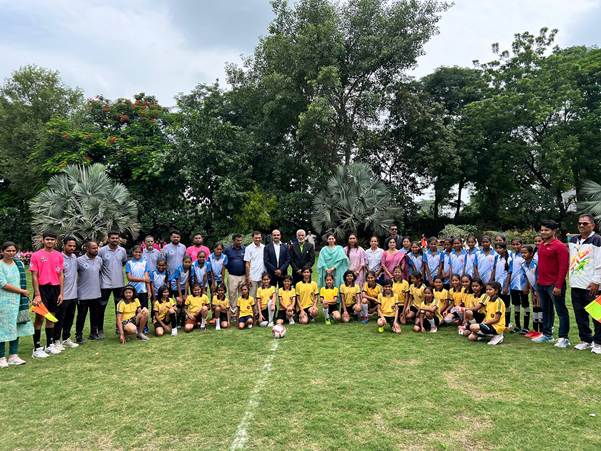
- 13 Aug 2025
In News:
The Khelo India ASMITA Football League 2025-26 was inaugurated in Jalgaon, Maharashtra, by the Minister of State for Youth Affairs & Sports, Raksha Khadse. The initiative is a key step in promoting gender-inclusive sports participation and empowering women athletes at the grassroots level.
About ASMITA
- Full form: Achieving Sports Milestone by Inspiring Women Through Action (ASMITA).
- Launched: 2021, under Khelo India.
- Nodal Ministry: Ministry of Youth Affairs and Sports.
- Support: Sports Authority of India (SAI), National Sports Federations, AIFF, WIFA, and other stakeholders.
- Component of: Khelo Bharat Niti – promoting sports as a tool for nation-building and empowerment.
Objectives
- Affirmative action to increase women’s participation in sports.
- Provide grassroots platforms for talent discovery, especially among tribal and minority communities.
- Create opportunities for young girls, addressing historical imbalances in sports.
- Help women challenge stereotypes and emerge as role models.
Key Features
- Inclusive Participation: From first-time players to hidden talent, ensuring wide outreach.
- Talent Identification: Leagues used as scouting grounds for future athletes.
- Scale: In FY 2025-26, 852 leagues are planned across 15 sports disciplines, targeting 70,000+ women athletes in all States/UTs.
- Age Focus: Leagues cover multiple categories, including U-13 and above.
- Institutional Backing: Supported by SAI and National Sports Federations to ensure professional management.
Significance
- Promotes women’s empowerment through sports.
- Strengthens grassroots sports ecosystem.
- Contributes to India’s vision of becoming a global sporting powerhouse with equal female participation.
- Aligns with the government’s philosophy of “Sabka Saath, Sabka Vikas.”
Revised Income Tax Bill, 2025
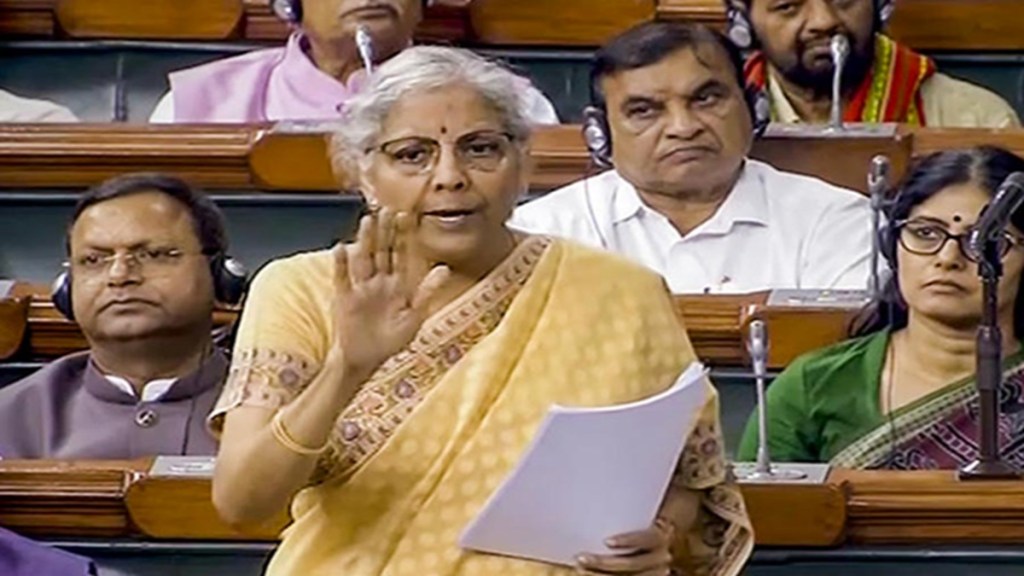
- 13 Aug 2025
In News:
The Income Tax (No. 2) Bill, 2025 was passed in the Lok Sabha in August 2025, replacing the Income Tax Act, 1961 after nearly six decades. The earlier draft of the Bill was withdrawn to incorporate recommendations of the Parliamentary Select Committee and stakeholder feedback. The revised Bill consolidates, simplifies, and modernises India’s direct tax framework.
Background
- Old Act (1961): Complex language, overlapping provisions, and compliance burden.
- New Bill (2025):
- Contains 536 sections and 16 schedules.
- Incorporates over 285 recommendations of the Select Committee, which examined the draft for four months and submitted a 4,500-page report.
- Aims to make the law simpler, clearer, and more aligned with the digital era.
Key Features
- Simplification of Tax Framework
- Single “Tax Year” concept replaces “Previous Year” and “Assessment Year”.
- Outdated and contradictory provisions removed to reduce litigation.
- Clear drafting, structured numbering, and improved terminology for easier interpretation.
- Taxpayer-Friendly Provisions
- Refunds allowed even if returns are filed after the due date.
- NIL-TDS certificates available for taxpayers with no liability.
- Relief on vacant house property – no taxation on notional rent.
- 30% standard deduction (post municipal tax) and interest deduction allowed on rented property.
- Corporate and MSME Reforms
- ?80M deduction on inter-corporate dividends reintroduced.
- MSME definition aligned with the MSME Act for uniformity.
- Institutional & Governance Reforms
- CBDT empowered for flexible, digital-era rule-making.
- Simplified compliance for TDS, PF withdrawals, advance rulings, and penalties.
- Relief to Specific Sectors
- Alternate Minimum Tax (AMT) on LLPs abolished.
- Charitable Trusts – compliance relaxations and reduced regulatory burden.
- Transfer Pricing & Associated Enterprise definitions rationalised.
- Extension of pension benefits – commuted pension deduction available even for non-employee individuals.
World Elephant Day 2025
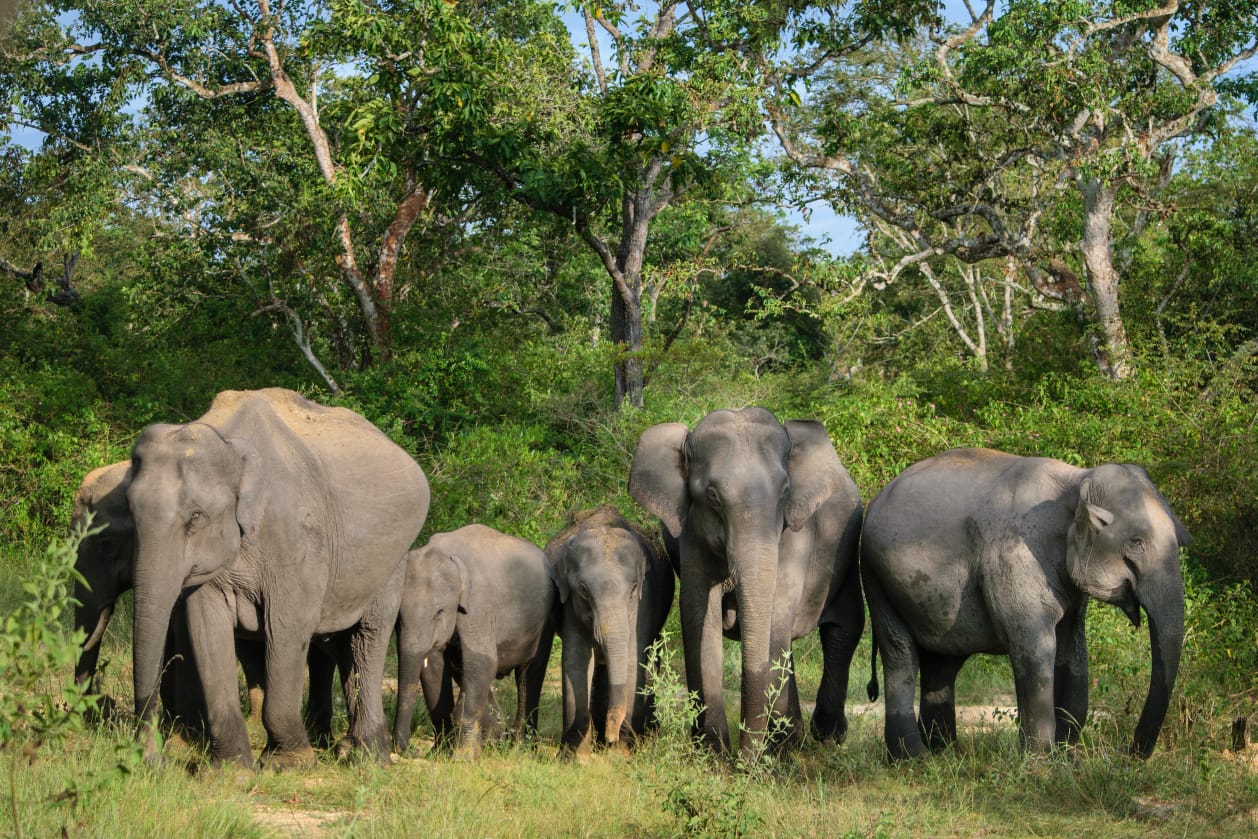
- 13 Aug 2025
In News:
World Elephant Day 2025 was celebrated on August 12 in Coimbatore, Tamil Nadu, organised by the Ministry of Environment, Forest and Climate Change (MoEF&CC) in collaboration with the Tamil Nadu Forest Department. The event focused on human–elephant conflict (HEC) mitigation and reaffirmed global commitment to elephant conservation.
About World Elephant Day
- Launched in 2012 by Patricia Sims (Canada) and the Elephant Reintroduction Foundation of Thailand.
- Aims to promote conservation of elephants, raise awareness on threats like habitat loss, poaching, and HEC, and encourage human–elephant coexistence.
Elephants in India
- India holds 60% of the global wild elephant population.
- 33 Elephant Reserves and 150 Elephant Corridors (as per 2023 Report).
- Elephants are recognised as National Heritage Animal of India.
- Legal and institutional backing provided through Project Elephant (1992), Wildlife Protection Act, and corridor conservation measures.
Human–Elephant Conflict (HEC)
- Rising incidents of elephants entering human settlements due to habitat loss, fragmentation, and search for food/water.
- The Coimbatore workshop under World Elephant Day 2025 brought together policymakers, foresters, conservationists, and civil society to share best practices.
- Measures discussed: habitat management, corridor maintenance, awareness campaigns, and capacity building in high-conflict areas.
- Focus on balancing wildlife conservation with human safety through community participation and scientific approaches.
Public Participation
- 12 lakh students from 5,000 schools across India joined awareness programmes.
- Citizen outreach emphasised coexistence, youth engagement, and long-term behavioural change in society.
Conservation Status (IUCN Red List)
- Asian Elephant (Elephas maximus): Endangered.
- African Savanna Elephant (Loxodonta africana): Endangered.
- African Forest Elephant (Loxodonta cyclotis): Critically Endangered.
Ecological Importance of Elephants
- Keystone species: maintain grasslands, disperse seeds, create water holes, and support biodiversity.
- Social structure: Matriarch-led herds with strong communal care for calves; males often solitary or in small groups.
- Long gestation (22 months) and slow reproduction make them vulnerable to population decline.
Jal Jeevan Mission (JJM)

- 13 Aug 2025
In News:
The Jal Jeevan Mission (JJM), launched in August 2019, aims to provide Functional Household Tap Connections (FHTCs) to every rural household, ensuring safe, adequate, and regular potable water supply. At the time of its launch, only 17% of rural households (3.23 crore) had tap water access. As of 14 August 2025, this has increased to 81% coverage (15.68 crore households) out of a total 19.36 crore rural households, with over 12.45 crore additional connections provided.
Institutional Framework
- State Subject: Drinking water supply is primarily the responsibility of States/UTs, while the Centre provides technical and financial support.
- Funding: An initial outlay of ?2,08,652 crore was approved; the scheme has now been extended until 2028 with enhanced allocation for completing pending works and strengthening Operation & Maintenance (O&M).
- Citizen Participation: The 2025 Budget emphasized “Jan Bhagidari” for sustainable and community-centric water service delivery.
Quality Standards and Monitoring
- Benchmark: Water quality is mandated to comply with BIS:10500 standards, which specify acceptable and permissible limits for chemical, physical, and bacteriological parameters.
- Testing: In December 2024, the government released a Concise Handbook for States/UTs, recommending comprehensive testing at multiple points—source, treatment plant, storage, and distribution.
- Remedial Actions: Include regular cleaning of overhead tanks and corrective measures in case of contamination.
- Transparency Tools:
- JJM Dashboard “Citizen Corner” displays village-level water test results.
- Complaints can be filed via CPGRAMS (pgportal.gov.in) and the Department’s website (jalshakti-ddws.gov.in).
- Aadhaar-linked monitoring, geo-tagging, IoT sensors, and third-party inspections are employed for real-time tracking.
Significance
- Public Health: Ensures safe drinking water, reducing the burden of waterborne diseases.
- Gender Empowerment: Frees women and girls from time-consuming water collection, enabling better education and livelihoods.
- Rural Development: Improves quality of life, reduces drudgery, and enhances rural productivity.
- Sustainability: Integrates with groundwater management initiatives like the Atal Bhujal Yojana, promoting long-term water security.
Current Status (2025)
- Coverage: 81% rural households have tap water supply.
- Target: Universal coverage by 2028 with a focus on infrastructure quality, O&M, and sustainable, citizen-driven service delivery.
Supreme Court orders immediate removal of stray dogs from Delhi-NCR streets
- 13 Aug 2025
In News:
The Supreme Court of India has directed the immediate removal of all free-ranging dogs from Delhi, Noida, Gurugram, and Ghaziabad. The Court emphasized permanent relocation of these animals to shelters, citing rising incidents of rabies and dog bites, particularly affecting children and vulnerable groups.
Key Features of the Order
- Complete Removal: All stray dogs are to be captured to ensure “stray-free” streets in urban and peri-urban areas.
- No-Release Policy: Unlike the earlier Animal Birth Control (ABC) approach, captured dogs will not be returned to their original localities but retained in shelters.
- Shelter Infrastructure: Authorities must build facilities capable of housing at least 5,000 dogs within eight weeks, prioritizing high-risk localities.
- Emergency Response: A 24×7 helpline with a four-hour response time is mandated to tackle bite incidents.
- Strict Compliance: Interference with the process will attract contempt of court, ensuring accountability.
Rationale Behind the Order
- Public Health Priority: With nearly 5,700 rabies-related deaths annually (95% from dog bites), the order seeks to directly curb a preventable disease.
- Protection of Vulnerable Groups: Children and the elderly face higher risks due to limited self-defence capacity.
- Policy Ineffectiveness: The sterilisation-centric ABC model has not adequately addressed aggressive or rabies-carrying dogs.
- Constitutional Angle: By invoking Article 21 (Right to Life and Liberty), the Court underlined safe mobility and freedom from fear in public spaces.
- Permanent Reform: A structural shift from temporary containment to long-term removal from public areas.
Arguments in Favour
- Public Safety: A direct life-saving intervention against rabies deaths.
- Constitutional Backing: Strengthens the right to security under Article 21.
- Urban Governance: Integrates sanitation and safety into city management.
- Accountability: Surveillance and records ensure transparency in enforcement.
- Policy Gaps Addressed: Closes loopholes of the ABC model by ending return-to-locality practices.
Concerns and Counter-Arguments
- Legal Conflict: The directive may clash with existing ABC Rules framed under the Prevention of Cruelty to Animals Act.
- Animal Welfare: Overcrowded shelters risk inhumane conditions, raising ethical concerns.
- Ecological Impact: Sudden removal could disrupt rodent control and waste management functions performed by strays.
- Risk of Abuse: Lack of monitoring might lead to covert culling under the guise of relocation.
- Rights-Based Critique: May be seen as undermining the intrinsic rights of animals and compassion-based governance.
Way Forward
- Humane Shelter Models: Ensure adequate space, veterinary care, and nutrition.
- Mass Vaccination Drives: Combine removal with preventive health measures to eradicate rabies.
- Adoption and Community Participation: Promote responsible adoption under strict guidelines.
- Policy Harmonisation: Amend ABC Rules to align with SC directions and resolve legal inconsistencies.
- Awareness and Behavioural Change: Community-level campaigns on rabies prevention and civic responsibility.
Conclusion
The Supreme Court’s intervention highlights the tension between public health imperatives and animal welfare ethics. While it seeks to secure citizens’ right to safe public spaces, it also raises concerns of legality, humane treatment, and ecological balance. Going forward, the challenge lies in striking a balance between constitutional morality (right to life) and compassion ethics (animal welfare) through coherent policy design and ethical urban governance.
Biofortified Potatoes
- 12 Aug 2025
In News:
India is intensifying efforts to combat micronutrient deficiencies and enhancenutritional security by introducing biofortified potatoes with enhanced iron content. These varieties, developed by the International Potato Center (CIP), Peru, are being adapted for Indian conditions in collaboration with the ICAR–Central Potato Research Institute (CPRI), Shimla.
What are Biofortified Potatoes?
- Definition: Specially bred potatoes enriched with higher levels of iron, zinc, and vitamin C compared to conventional varieties.
- Objective: Address iron deficiency anemia and “hidden hunger” without compromising yield or taste.
- Development: CIP has released iron-rich potato varieties in Peru, now under evaluation and seed multiplication for Indian farmers.
Sweet Potatoes with Vitamin A
- Biofortified Sweet Potatoes with high beta-carotene (Vitamin A precursor) are already cultivated in Odisha, West Bengal, Karnataka, and Assam.
- Their bright orange flesh indicates nutritional richness, helping prevent night blindness, strengthen immunity, and improve child growth.
- ICAR-CTCRI’s SP-95/4 variety combines high beta-carotene with good yield, enhancing tribal nutrition.
- Advantages: Long shelf life (up to 2 years without refrigeration), versatile in food preparation, and suitable for Mid-Day Meal and nutrition schemes.
Institutional Initiatives
- CIP South Asia Regional Centre is being set up in Agra, Uttar Pradesh, within the Indo-Gangetic Plains – the world’s largest potato-producing region – to strengthen R&D and seed access.
- ICAR’s Wider Biofortification Drive:
- Released 61 biofortified crop varieties, including 34 field crops (cereals, pulses, millets, oilseeds) and 27 horticultural crops (tubers, vegetables, medicinal plants).
- Examples:
- CR Dhan 416: Salinity-resistant rice with pest resistance.
- Durum Wheat: Rich in zinc (41.1 ppm), iron (38.5 ppm), and 12% protein.
Biofortification: Concept and Importance
- Definition: Enhancing the nutrient content of crops through conventional breeding, agronomic practices, or biotechnology while preserving consumer-preferred traits.
- Examples:
- Iron-rich: Rice, beans, sweet potato, cassava, legumes.
- Zinc-rich: Wheat, rice, maize, beans.
- Vitamin A-rich: Sweet potato, maize, cassava.
- Protein/amino acid-rich: Sorghum, cassava.
Significance for India
- Public Health: Addresses widespread iron deficiency anemia, especially among women and children.
- Agricultural Sustainability: Promotes nutritionally dense crops without heavy reliance on supplements.
- Policy Alignment: Supports PoshanAbhiyaan, Mid-Day Meal Scheme, and SDG 2 (Zero Hunger).
- Economic Benefits: Enhances farmer incomes by creating demand for nutrient-rich crops.
MERITE Scheme

- 12 Aug 2025
In News:
The Union Cabinet has approved the Multidisciplinary Education and Research Improvement in Technical Education (MERITE) Scheme with a total outlay of ?4,200 crore (2025–26 to 2029–30). This includes ?2,100 crore World Bank loan assistance. The scheme seeks to transform India’s technical education landscape in line with the National Education Policy (NEP), 2020.
Coverage
- Institutions: 275 government/government-aided technical institutions (175 engineering institutions + 100 polytechnics).
- Beneficiaries: Around 7.5 lakh students across all States and Union Territories.
- Stakeholders: National Institutes of Technology (NITs), State Engineering Institutions, Affiliating Technical Universities (ATUs), with implementation support from IITs, IIMs, AICTE, and NBA.
Objectives
- Improve quality, equity, and governance in technical education.
- Align curricula with labour market requirements.
- Strengthen the research and innovation ecosystem.
- Support State/UT technical education departments in digitalization and quality assurance.
Key Focus Areas
- Digital Transformation: ICT-enabled learning, blended teaching models.
- Multidisciplinary Programs: Introduction of NEP-2020 aligned technical courses.
- Skill & Employability Enhancement: Internships, industry-linked curricula, language labs, skill/maker labs.
- Research and Innovation: Establishing research hubs, incubation centres, innovation labs.
- Faculty & Governance: Faculty development programs, creation of academic administrators with focus on women leadership.
- Accreditation & Quality Assurance: Strengthening institutional governance and accountability.
Expected Outcomes
- Increased student employability and higher placement rates.
- Improved research output and innovation ecosystem.
- Greater equity and inclusion in technical education, with emphasis on reducing gender gaps and digital divide.
- Enhanced global competitiveness of Indian technical institutions.
Employment Generation Impact
By modernising technical education and strengthening linkages with industry, MERITE is expected to:
- Improve fresh graduates’ placement prospects.
- Foster entrepreneurship through incubation and innovation centres.
- Contribute to reducing unemployment among engineering graduates.
Background and Significance
India’s sustainable and inclusive growth hinges on technological advancement, which demands upgraded academic and research standards. MERITE builds upon NEP-2020 reforms such as curriculum revamp, skill development, interdisciplinary learning, and enhanced governance. Importantly, it integrates global expertise through the World Bank partnership.
The scheme also ensures participatory governance, incorporating feedback from States/UTs during policy design, thereby strengthening cooperative federalism in higher education reform.
Global Risk of Zoonotic Diseases and India’s Preparedness
- 12 Aug 2025
In News:
A recent study published in Science Advances has highlighted that over 9.3% of the world’s land surface is at high (6.3%) or very high (3%) risk of zoonotic outbreaks — diseases transmitted between animals and humans. About 3% of the global population lives in extremely high-risk areas, while nearly 20% live in medium-risk zones.
The study introduced a Global Epidemic Risk Index, combining country-specific zoonotic risk factors with national preparedness capacities, to help policymakers strengthen health systems, allocate resources effectively, and enhance global cooperation.
Disease Burden and Examples
- Zoonotic diseases account for 60% of all known infectious diseases and up to 75% of emerging infectious diseases (EIDs).
- Globally, they cause 2.5 billion cases and 2.7 million deaths annually.
- Examples: Rabies, anthrax, influenza (H1N1, H5N1), Nipah virus, brucellosis, tuberculosis, Ebola, SARS, MERS, and Covid-19.
Drivers of Spillover Events
- Climate Change: Rising temperatures, erratic rainfall, and water scarcity heighten risks by altering habitats and vector distribution.
- Land Use Change: Deforestation, urban expansion, and agricultural intensification increase human–animal contact.
- Transmission Routes:
- Direct (e.g., avian influenza)
- Food-borne (e.g., salmonella)
- Vector-borne (e.g., West Nile virus)
- Water-borne (e.g., cryptosporidiosis)
Regional Vulnerabilities
- Latin America: 27% of land at high risk
- Oceania: 18.6%
- Asia: 7%
- Africa: 5%
India’s Vulnerability
- An ICMR study (2018–23) found that 8.3% of all reported outbreaks (583 of 6,948) were zoonotic.
- Outbreaks peaked during June–August, linked to monsoon-driven ecological changes.
- The Northeast region accounted for 35.8% of reported zoonotic outbreaks.
India’s Initiatives
- National Animal Disease Control Programme (NADCP): Mass vaccination to eliminate Foot & Mouth Disease (FMD) and Brucellosis.
- Target: Control FMD by 2025 and eradicate by 2030.
- National One Health Programme for Prevention and Control of Zoonoses (2013): Integrated surveillance and inter-sectoral coordination.
- Animal Birth Control (Dogs) Rules, 2023: Rabies vaccination and sterilisation of stray dogs.
- Rabies Vaccination under ASCAD (Livestock Health & Disease Control Programme).
Global Initiatives
- Zoonotic Disease Integrated Action (ZODIAC): Launched by IAEA (2020) for early detection and rapid response.
- World Zoonoses Day (6 July): Marks Louis Pasteur’s rabies vaccine in 1885.
- G20 Pandemic Fund: Financial support for strengthening preparedness and response.
- Global Early Warning System (GLEWS): A WHO–FAO–WOAH collaboration for coordinated zoonotic disease surveillance.
One Health Approach
The One Health framework recognizes the interconnectedness of human, animal, and environmental health. It promotes collaborative, multisectoral strategies for sustainable disease prevention and response.
Rhisotope Project
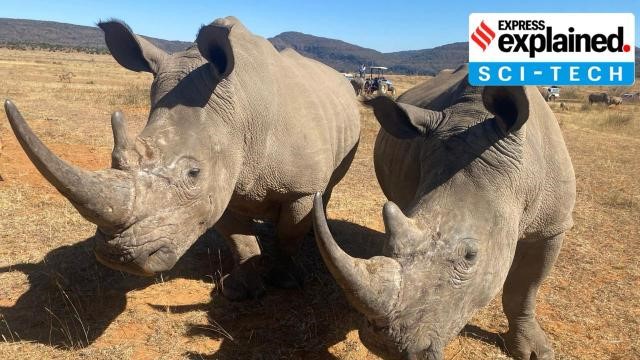
- 12 Aug 2025
In News:
South Africa, which shelters the world’s largest rhino population, has lost over 10,000 rhinos in the last decade to poaching driven by the illegal horn trade in Asian markets. To counter this crisis, the University of the Witwatersrand, in collaboration with the International Atomic Energy Agency (IAEA), has launched the Rhisotope Project (2024) — a novel initiative using radioactive isotopes to protect rhinos.
What is the Rhisotope Project?
- A non-invasive procedure where rhino horns are injected with low doses of radioisotopes.
- The process is harmless to rhinos but makes horns:
- Detectable through Radiation Portal Monitors (RPMs) and scanners at borders, ports, and airports — even in sealed shipping containers.
- Toxic and unfit for human use, reducing demand in illegal trade.
- Pilot studies (2024–25):
- 20 rhinos in the Waterberg Biosphere Reserve were treated.
- Tests by Ghent University (Belgium) showed no cellular damage or health impact.
- 3D-printed horns used in trials confirmed detectability in container loads.
Why Radioisotopes?
- Radioisotopes are unstable forms of elements that emit ionising radiation (alpha, beta, gamma) to achieve stability.
- They are easily traceable with nuclear detection systems.
- Already widely used in medicine (I-131 for thyroid, Tc-99m for imaging), archaeology (C-14 dating), and industry.
The Scale of the Crisis
- Global rhino numbers: Declined from ~5,00,000 in the early 20th century to ~27,000 today (IUCN).
- South Africa: Lost 103 rhinos to poaching in the first quarter of 2025 alone.
- Conventional measures like dehorning reduce poaching but disrupt rhino social behaviour and habitat use. The Rhisotope Project offers a less disruptive alternative.
Broader Conservation Significance
- If successful, the method could be extended to other endangered species like elephants and pangolins.
- It represents an international collaboration that combines nuclear science with wildlife conservation, redefining the role of technology in biodiversity protection.
Threats Beyond Poaching
- Invasive species: Plants like Parthenium threaten habitats (e.g., Assam’s Pobitora Wildlife Sanctuary, home to the densest one-horned rhino population).
- Climate change: Intensified droughts and monsoons push rhinos into human-dominated landscapes, increasing conflicts.
- Habitat loss due to agricultural expansion and human settlement.
Rhino Conservation Initiatives
- Global/Regional:
- New Delhi Declaration on Asian Rhinos (2019)
- DNA Profiling of all Rhinos for tracking and protection
- India-specific:
- National Rhino Conservation Strategy
- Indian Rhino Vision 2020 (for Assam’s one-horned rhinos)
About the IAEA
- Established in 1957 as the UN’s “Atoms for Peace”organisation.
- Promotes peaceful applications of nuclear technology while preventing misuse for weapons.
- 178 member states; India is a founding member.
- Awarded the 2005 Nobel Peace Prize for contributions to nuclear safety and disarmament.
- HQ: Vienna, Austria. Reports to both UNGA and UNSC.
National Narcotics Helpline MANAS
- 12 Aug 2025
In News:
The Government of India launched the National Narcotics Helpline MANAS (Madak-PadarthNishedAsoochna Kendra) to strengthen citizen participation in the fight against the drug menace. The initiative, spearheaded by the Narcotics Control Bureau (NCB) under the Ministry of Home Affairs (MHA), functions as a secure, bilingual, and citizen-centric platform to enable anonymous reporting of drug trafficking, illicit cultivation, and related crimes, while also providing counselling and rehabilitation support.
Key Features of MANAS
- Helpline Number: 1933 (Toll-Free)
- Digital Access: Web portal (www.ncbmanas.gov.in), Email (info.ncbmanas@gov.in), and UMANG Mobile App
- Integration: Direct transfer to the MoSJE De-addiction Helpline (14446) for rehabilitation guidance
- Awareness Outreach: Posters, videos, contests, and citizen engagement through MyGov platform under the Drug-Free Bharat campaign
India’s Legal & Policy Framework Against Drug Abuse
- Constitutional Backing: Article 47 directs the State to prohibit intoxicating substances except for medicinal purposes.
- Legislation:
- Narcotic Drugs and Psychotropic Substances (NDPS) Act, 1985
- Prevention of Illicit Traffic in NDPS Act, 1988
- Drugs and Cosmetics Act, 1940
- International Conventions: India is party to the
- Single Convention on Narcotic Drugs, 1961 (amended 1972)
- Convention on Psychotropic Substances, 1971
- UN Convention against Illicit Traffic in Narcotic Drugs and Psychotropic Substances, 1988
- Other Initiatives: NIDAAN Portal (for drug law offenders), NashaMukt Bharat Abhiyan (community-based de-addiction programme).
Significance for Governance & Society
The MANAS helpline marks a shift from enforcement-centric approaches to a citizen-participatory, tech-enabled model. It bridges law enforcement, rehabilitation, and public awareness, reflecting India’s commitment to a balanced supply and demand reduction strategy against narcotics.
World Lion Day 2025
- 11 Aug 2025
In News:
India celebrated World Lion Day 2025 at Barda Wildlife Sanctuary, Gujarat, marking a milestone in wildlife conservation. The event highlighted the success of Project Lion, launched by Prime Minister Narendra Modi on 15th August 2020, and underscored India’s global leadership in protecting the endangered Asiatic Lion (Panthera leopersica).
Status of Asiatic Lions
- Population Growth: Numbers rose from 284 in 1990 to 674 in 2020, and further to 891 in 2025(16th Lion Census). This reflects a 32% increase since 2020 and 70% rise over the last decade.
- Distribution: The lions roam across ~35,000 sq. km in 11 districts of Saurashtra, with Gir National Park as the core habitat. In recent years, Barda Wildlife Sanctuary (192 sq. km) has emerged as a second home, hosting 17 lions including 11 cubs.
- Global Significance: If Asiatic lions survive anywhere today, it is solely in India—making their conservation a matter of both ecological and national pride.
Ecological and Cultural Importance
- Apex Predators: Regulate herbivore populations, prevent overgrazing, and maintain ecosystem balance.
- Cultural Symbolism: Depicted on the National Emblem and Indian currency, symbolizing strength and heritage.
- Unique Traits: Asiatic lions are smaller than African lions, with a distinct belly fold and less prominent mane (ears remain visible).
Conservation Measures
1. Project Lion (2020–2030)
- Budget: ?2,927 crore sanctioned.
- Focus Areas:
- Habitat improvement and prey base augmentation.
- Scientific monitoring using GPS, GIS-based real-time surveillance, and automated sensor grids.
- Veterinary healthcare (National Referral Centre at Junagadh).
- Human–wildlife conflict mitigation.
- Community participation and eco-tourism.
2. Greater Gir Concept: Expands protected landscapes toGirnar, Pania, Mitiyala, and Bardasanctuaries to reduce habitat pressure.
3. Recent Developments
- ?180 crore wildlife and ecotourism initiative launched in 2025 for new habitats, safari park, and veterinary facilities.
- Barda Safari Park & Zoo approved to boost ecotourism and conservation.
- Return of lions to Barda after 143 years, enhancing biodiversity and eco-tourism potential.
4. Global Cooperation
- International Big Cats Alliance (IBCA, 2023): A platform of 97 countries for sharing knowledge and resources on big cat conservation.
Conservation Status
- Panthera leo (Lion)IUCN Red List: Vulnerable (Green Status: Largely Depleted).
- CITES: Appendix I.
- Wildlife (Protection) Act, 1972: Schedule I species.
- Part of India’s Species Recovery Programme under the Centrally Sponsored Scheme – Development of Wildlife Habitat.
India’s 3rd Launch Pad in Sriharikota by 2029
- 11 Aug 2025
In News:
India’s space programme is set for a major expansion with the Third Satellite Launch Pad (TLP) being developed at the Satish Dhawan Space Centre (SDSC), Sriharikota. The facility, sanctioned in March 2025, is expected to be fully operational by March 2029, significantly strengthening India’s ability to handle next-generation launch vehicles (NGLV) and ambitious human spaceflight missions.
Development Timeline and Infrastructure
The TLP project has been structured with clear milestones:
- Civil works: by May 2028
- Fluid and propellant storage systems: by July 2028
- Launch pad systems: by September 2028
- Commissioning: by March 2029
Preliminary geotechnical investigations and topographic surveys were completed in May 2025. Currently, tenders for essential road, electrical, and infrastructure works are under evaluation.
Objectives and Capabilities
- Support NGLV Operations: The 91-metre-tall Next Generation Launch Vehicle, designed with semi-cryogenic stages, will have a payload capacity of up to 30 tonnes to Low Earth Orbit (LEO)—a major leap from existing LVM3 capabilities.
- Backup for LVM3: Ensures continuity of operations in case of single-pad disruption.
- Enable Human Spaceflight: Provides critical infrastructure for the Gaganyaan mission, future astronaut flights, and crewed lunar landing plans by 2040.
- Facilitate Deep-Space Missions: Supports long-term goals like BharatiyaAntariksh Station (2035), lunar missions, and interplanetary exploration.
Key Features
- Advanced Propellant Systems: Compatible with cryogenic and semi-cryogenic fuels with higher thrust requirements.
- New Jet Deflection Systems: Built to withstand the powerful thrust of next-gen rockets.
- Make-in-India Integration: Emphasis on collaboration with private industry and MSMEs, ensuring maximum indigenous participation in design, construction, and manufacturing.
- Modular Construction: Use of multiple work packages for efficient execution.
- Increased Launch Capacity: Enhances frequency, redundancy, and capability to handle commercial as well as strategic missions.
Strategic Significance
- Redundancy and Reliability – Reduces dependence on two existing pads, mitigating risks of delays due to maintenance or failure.
- Future-Proofing India’s Space Infrastructure – Specifically designed for larger payloads, human-rated systems, and next-gen propulsion.
- Boost to Space Economy – By enabling frequent and diverse launches, TLP supports India’s rising commercial space sector under the Make-in-India and Atmanirbhar Bharat initiatives.
- Geopolitical Leverage – Strengthens India’s position in the global space economy, catering to both domestic and international clients.
Diabetes in India
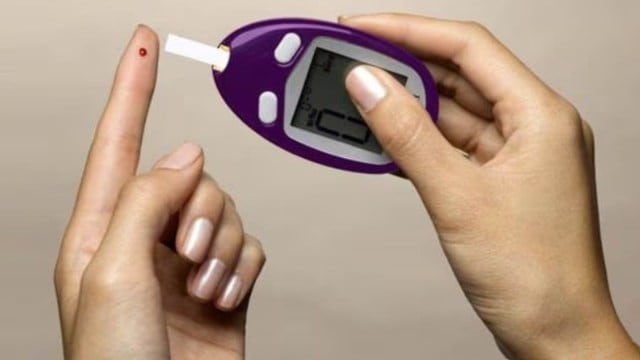
- 11 Aug 2025
In News:
A Lancet Global Health study (2023), based on the Longitudinal Aging Study in India (LASI), has highlighted the alarming rise of diabetes among Indians aged 45 years and above. The findings underscore the urgent need for universal screening, awareness, and improved management strategies to address this public health challenge.
Key Findings of the Study
- Prevalence: One in five Indians aged 45+ (approx. 20%) had diabetes in 2019.
- Undiagnosed Diabetes: Nearly 40% of people with diabetes were unaware of their condition—around 20 million Indians remain undiagnosed.
- Treatment Gaps:
- 5% had untreated diabetes.
- 47% were under-treated.
- Only 36% were adequately treated.
- Awareness and Treatment: Once aware, 94% of patients sought treatment, highlighting the impact of diagnosis.
- Control Rates:
- 46% achieved blood sugar control,
- 59% achieved blood pressure control,
- 6% used lipid-lowering medicines.
- Urban-Rural Divide: Urban prevalence (30%) was nearly double that of rural areas (15%).
- Gender Gap: Prevalence was similar in men (19.6%) and women (20.1%).
- Regional Trends:
- Highest rates: Chandigarh (36.9%), Kerala (36%), Puducherry (36%).
- Largest number of diabetics: Tamil Nadu (6.1 mn), Maharashtra (5.8 mn), Uttar Pradesh (4.7 mn).
- Methodology: Diagnosis based on HbA1c testing (3-month blood sugar average), more accurate than random glucose tests used in earlier surveys.
Understanding Diabetes
- Type 1: Autoimmune; body destroys insulin-producing cells. Requires lifelong insulin.
- Type 2: Accounts for 95%+ of cases; due to insulin resistance or inadequate production; linked to obesity, sedentary lifestyle, and genetics. Preventable via lifestyle changes.
- Gestational Diabetes: Occurs during pregnancy; increases risk of complications and later Type 2 diabetes.
- Type 5 (Newly Recognized): Seen in lean adolescents (BMI < 18.5 kg/m²); caused by malnutrition damaging pancreatic beta cells, leading to insulin deficiency.
India’s Policy and Programmatic Response
- Ayushman Arogya Mandirs (Health and Wellness Centres): Provide population-based diabetes screening.
- Fit India Movement: Encourages preventive health and fitness practices.
- School Interventions: CBSE mandates ‘sugar boards’ to educate students about hidden sugars and health risks.
- National Programme for Prevention and Control of Cancer, Diabetes, Cardiovascular Diseases and Stroke (NPCDCS): Strengthens NCD screening and management across primary healthcare.
RBI’s Internal Working Group Recommendations on Liquidity Management Framework
- 11 Aug 2025
In News:
The Reserve Bank of India (RBI) recently released the recommendations of its Internal Working Group (IWG) constituted to review the Liquidity Management Framework (LMF), which has been operational since February 2020. The review seeks to enhance efficiency, transparency, and predictability in liquidity operations—crucial for ensuring smooth monetary policy transmission.
Liquidity Management Framework (LMF):
- Objective: To manage systemic liquidity and guide short-term interest rates in alignment with monetary policy objectives.
- Core Mechanism: Operates through the Liquidity Adjustment Facility (LAF)—using repo (liquidity injection) and reverse repo (liquidity absorption) operations.
- Corridor System: The policy repo rate sits at the middle of the interest rate corridor, while the Weighted Average Call Rate (WACR) serves as the operating target of monetary policy.
- Other Tools: Open Market Operations (OMO), Cash Reserve Ratio (CRR), Statutory Liquidity Ratio (SLR) for durable liquidity; and Standing Deposit Facility (SDF) for absorbing surplus liquidity.
Key Recommendations of the IWG
- WACR as Operating Target
- Recommendation: Continue using overnight WACR as the operating target.
- Rationale: WACR strongly correlates with collateralized overnight money market rates, making it reliable for transmitting policy signals across the system.
- Discontinuation of 14-day VRR/VRRR as Main Operation
- Recommendation: Replace 14-day Variable Rate Repo/Reverse Repo (VRR/VRRR) as the main liquidity management tool.
- Alternative: Manage transient liquidity primarily through 7-day repo/reverse repo operations and other operations (overnight to 14-day tenor) at RBI’s discretion.
- Rationale: 14-day auctions have witnessed lower participation, as banks prefer shorter-tenor instruments like SDF.
- Advance Notice for Liquidity Operations
- Recommendation: RBI should provide at least one-day advance notice for repo/reverse repo operations.
- Exception: Same-day operations may be undertaken in response to evolving liquidity shocks.
- Rationale: Predictability reduces market uncertainty and stabilizes money market rates.
- Variable Rate Auction Mechanism
- Recommendation: Continue using variable rate auctions for repo and reverse repo operations, including longer tenors.
- Rationale: Enhances price discovery and aligns market rates with liquidity conditions.
- Cash Reserve Ratio (CRR) Norms
- Recommendation: Continue with the 90% daily minimum maintenance requirement of CRR.
- Rationale: Ensures banks maintain sufficient reserves, preventing liquidity shortfalls.
- Durable Liquidity Tools
- Observation: Existing instruments under the LMF are sufficient to meet durable liquidity needs; no changes are required at this stage.
Key Terms:
- WACR (Weighted Average Call Rate): The average overnight interest rate at which banks borrow and lend funds, weighted by transaction volume; RBI’s operating target for monetary policy.
- Repo Rate: Rate at which RBI lends to banks against collateral to inject liquidity.
- Reverse Repo Rate: Rate at which RBI borrows from banks to absorb excess liquidity.
- VRR/VRRR: Auction-based repo/reverse repo operations, where rates are determined by market bids.
- SDF (Standing Deposit Facility): Tool for absorbing liquidity without collateral.
- CRR (Cash Reserve Ratio): Portion of deposits banks must maintain with RBI as liquid cash.
Significance of Recommendations
- For Monetary Policy: Reinforces the role of WACR in aligning short-term rates with policy stance.
- For Markets: Enhances predictability, reducing volatility in money markets.
- For Banks: Offers greater flexibility in managing short-term liquidity needs.
- For RBI: Provides operational flexibility to balance stability with market efficiency.
TRISO Nuclear Fuel
- 11 Aug 2025
In News:
The United States Department of Energy (DOE) has selected Standard Nuclear as the first company to establish a domestic supply chain for TRi-structural ISOtropic (TRISO) nuclear fuel, marking a major step toward reducing dependence on Russian uranium and advancing nuclear innovation. The initiative, part of DOE’s Fuel Line Pilot Program (2025), is designed to strengthen US energy security, promote private sector participation, and accelerate the deployment of advanced nuclear reactors.
Why TRISO Matters
TRISO is a next-generation nuclear fuel specifically engineered for high-temperature gas-cooled reactors (HTGRs) and molten salt-cooled reactors, both of which fall under Generation IV (Gen-IV) advanced reactor designs.
- Composition: TRISO fuel consists of a uranium–carbon–oxygen fuel kernel encapsulated by three protective layers of carbon and ceramic materials.
- Form: The particles are extremely small—seed-sized—and can be fabricated into cylindrical pellets or “pebbles.”
- Key Features:
- Extreme durability: Resistant to neutron irradiation, corrosion, oxidation, and very high temperatures.
- Self-containment: Each particle acts as its own containment system, preventing radiation leakage even under extreme reactor conditions.
- Versatility: Compatible with multiple advanced reactor designs, including small modular reactors (SMRs).
This makes TRISO structurally and functionally superior to conventional nuclear fuels, ensuring safer, more reliable, and more efficient reactor performance.
Strategic Implications
- Energy Security & Supply Chains
- The US has historically relied on imports of enriched uranium, particularly from Russia.
- By developing domestic TRISO production in Tennessee and Idaho, the DOE seeks to build a resilient nuclear fuel ecosystem independent of geopolitical disruptions.
- Advanced Reactor Deployment
- DOE’s Advanced Reactor Demonstration Program targets at least three new advanced reactor designs to achieve criticality by July 4, 2026.
- TRISO fuel is central to this push, enabling safer operation of SMRs and Gen-IV reactors, both of which are crucial to America’s clean energy transition.
- Private–Public Partnership
- Standard Nuclear will finance construction, operation, and decommissioning of TRISO fabrication facilities.
- Reactor developers will source nuclear material feedstock, partly through DOE’s high-assay low-enriched uranium (HALEU) allocation program.
- Technological Momentum
- Other firms, such as BWX Technologies (BWXT), have also developed TRISO production lines, including uranium nitride TRISO, in collaboration with Idaho and Oak Ridge National Laboratories.
- These advancements reinforce US leadership in nuclear innovation while supporting its broader climate and national security goals.
Tuvalu’s Planned Climate Migration to Australia
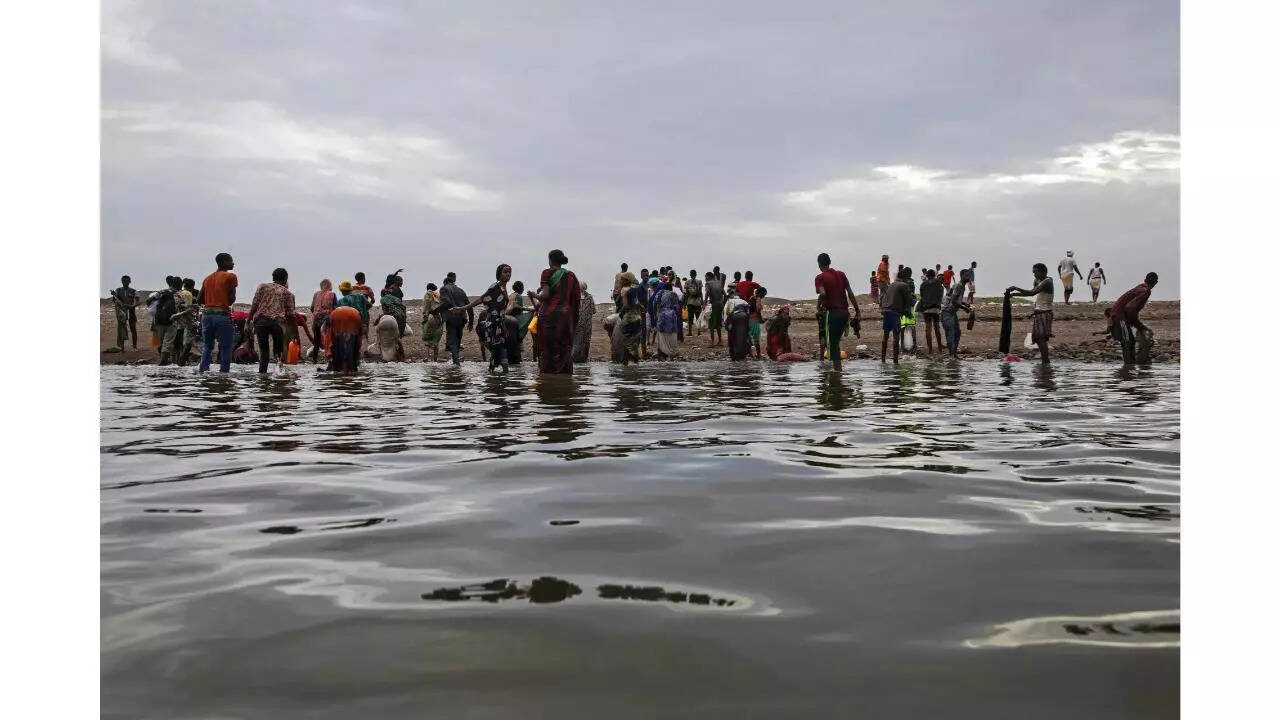
- 10 Aug 2025
In News:
Tuvalu, a small Pacific island nation, is undertaking the world’s first planned national migration due to the existential threat posed by climate change and rising sea levels. The initiative stems from the Falepili Union Treaty (2023) signed between Tuvalu and Australia, marking a landmark case in global climate governance and migration policy.
Why Migration is Needed
- Geography & Vulnerability: Tuvalu consists of nine coral atolls with a total land area of just 25.14 sq. km and a population of ~11,000 (2022 census). Its average elevation is only 2 metres, making it highly vulnerable to flooding, storm surges, and coastal erosion.
- Climate Impact:
- NASA’s Sea Level Change Team reported that sea levels in Tuvalu were already 15 cm higher in 2023 compared to the previous 30 years.
- At this rate, most of Tuvalu could be submerged by 2050.
- Two of its nine atolls are already largely underwater.
- Scientists warn the islands may become uninhabitable within 80 years.
The Falepili Union Treaty (2023)
- Migration Provision: Australia will grant 280 Tuvaluans permanent residency annually, with access to healthcare, education, housing, and employment.
- Selection Mechanism: Migration is ballot-based. The first phase (June–July 2025) saw 8,750 registrations. The first group of 280 migrants was selected on 25 July 2025.
- Scale: Along with other pathways to Australia and New Zealand, up to 4% of Tuvalu’s population could migrate annually. Within a decade, nearly 40% of the population may relocate, although some may return periodically.
- Objective: To ensure “mobility with dignity”, preventing Tuvaluans from becoming stateless climate refugees.
International Significance
- Precedent for Climate Migration: This is the first-ever state-backed relocation of an entire population due to climate change, setting a model for other vulnerable island nations.
- Global Climate Justice: Tuvalu’s case highlights the plight of Small Island Developing States (SIDS) and the urgent need for stronger international climate agreements.
- Diplomatic Signalling: Tuvalu’s Prime Minister Feleti Teo has called for a new global treaty safeguarding nations at risk from rising seas.
About Tuvalu
- Location: Polynesian island nation in the Pacific Ocean, midway between Australia and Hawaii.
- Capital: Funafuti.
- Population: ~11,000 (second least populous UN member after Vatican City).
- Economy: Relies on fishing licenses, foreign aid, and remittances from Tuvaluan seafarers.
- UN Membership: Since 2000; actively champions the rights of climate-vulnerable states.
India’s Joint Doctrines on Cyberspace and Amphibious Operations

- 10 Aug 2025
In News:
Recently, the Chief of Defence Staff (CDS) General Anil Chauhan released thedeclassified versions of India’s Joint Doctrines for Cyberspace Operations and Amphibious Operations. This step reflects India’s effort to enhance jointness, interoperability, and transparency in military operations while strengthening preparedness for multi-domain warfare.
Cyberspace Operations Doctrine
What is Cyberspace?
- A global domain comprising information systems, communication networks, satellites, and data infrastructures.
- It is borderless, dual-use (civilian and military), and subject to rapidly evolving threats.
Components of Cyberspace Operations
- Defensive Cyber Operations – Protects national and military networks against malware, hacking, and data breaches.
- Offensive Cyber Operations – Targets adversary systems to disrupt communications, disable command networks, or damage infrastructure.
- Cyber Intelligence & Reconnaissance – Collects and analyses data to detect vulnerabilities and anticipate attacks.
- Cyber Support Operations – Provides digital tools and assistance to land, maritime, air, and space operations.
- Resilience & Recovery – Ensures continuity through backup systems, redundancies, and rapid restoration measures.
Operational Principles
- Threat-informed Planning – Based on real-time intelligence.
- Interoperability – Seamless coordination across the three Services and with civil agencies.
- Layered Defence – Multi-tiered cyber security protocols.
- Legal & Ethical Compliance – Operates within Indian law and global cyber norms.
- Real-time Response – Swift counteraction to minimise damage.
Significance:
- Shields critical infrastructure (power grids, defence networks, communication systems).
- Acts as a force multiplier, enhancing conventional operations.
- Prepares India for hybrid warfare, where cyber, land, sea, and air threats are interlinked.
Amphibious Operations Doctrine
What are Amphibious Operations?
- Coordinated actions by naval, air, and land forces launched from the sea to secure objectives onshore.
- Applications range from combat missions to humanitarian assistance and disaster relief (HADR).
Key Features
- Tri-service Integration – Combines maritime, aerial, and ground assets.
- Rapid Response – Enables swift deployment from sea to shore.
- Strategic Reach – Expands influence over island territories and littoral regions.
- Flexible Missions – Suitable for both warfare and non-war operations (e.g., disaster relief).
- Maritime–Land Linkage – Strengthens the sea–land operational continuum.
Significance:
- Enhances maritime superiority in the Indian Ocean Region.
- Secures India’s island territories, trade routes, and coastal areas.
- Strengthens India’s blue-water navy aspirations and capacity for overseas contingencies.
- Provides options for HADR missions, vital in the Indo-Pacific where natural disasters are frequent.
Strategic Importance of Doctrines
The release of these doctrines marks a major step in joint military planning and multi-domain operations. They:
- Promote synergy among the Army, Navy, and Air Force, reducing duplication of efforts.
- Build resilience against hybrid threats, including cyber-attacks and maritime conflicts.
- Signal India’s intent to safeguard its national security and global strategic interests.
- Provide policymakers and military planners with a common framework and lexicon.
Further, the CDS has initiated work on new doctrines covering Military Space Operations, Special Forces Operations, Airborne/Heliborne Operations, Integrated Logistics, and Multi-Domain Operations. These will ensure India remains prepared for the emerging spectrum of modern warfare.
Biochar in India

- 10 Aug 2025
In News:
India is set to launch its carbon credit trading market in 2026, with biochar emerging as a promising carbon dioxide removal (CDR) technology. Biochar is a carbon-rich, porous, and stable substance produced through pyrolysis (burning biomass without oxygen) ofagricultural residue and municipal solid waste. It offers multiple co-benefits spanning climate mitigation, agriculture, energy, construction, and wastewater treatment.
India’s Untapped Biochar Potential
- Resource base: India generates 600+ million tonnes of agricultural residue and 60+ million tonnes of municipal solid waste annually, much of which is burnt or dumped, causing air pollution and GHG emissions.
- Carbon removal: Converting 30–50% of surplus biomass can yield 15–26 million tonnes of biochar, sequestering ~0.1 gigatonne of CO?-eq annually.
- Byproducts:
- Syngas (20–30 MT): Can generate 8–13 TWh electricity, replacing 0.4–0.7 MT coal/year.
- Bio-oil (24–40 MT): Can offset 8% of diesel/kerosene demand, reducing >2% of India’s fossil-fuel-based emissions.
- Employment: Village-level pyrolysis units could create 5.2 lakh rural jobs, linking waste management with livelihoods.
Multi-Sectoral Applications
1.Agriculture and Soil Health
- Enhances soil organic carbon and fertility.
- Improves water retention, critical for semi-arid regions.
- Reduces fertilizer needs by 10–20% and increases crop yields by 10–25%.
- Cuts N?O emissions by 30–50% (273× more potent than CO?).
- Example: Andhra Pradesh’s Community Managed Natural Farming has piloted biochar to improve soil quality.
2. Energy and Fuel Substitution
- Syngas and bio-oil provide renewable energy for rural micro-grids and transport.
- Example: Maharashtra pilot projects use pyrolysis gas to replace diesel generators.
3. Construction Sector
- Adding 2–5% biochar to concrete:
- Increases mechanical strength and heat resistance (+20%).
- Sequesters ~115 kg CO? per cubic metre.
- Offers a green alternative to cement, key for India’s infrastructure push.
- Example: IIT-Madras research shows biochar-concrete mix lowers embodied carbon in buildings.
4. Wastewater Treatment
- 1 kg biochar can treat 200–500 litres of wastewater.
- With India producing 70 billion litres/day (72% untreated), biochar offers low-cost, decentralised treatment solutions for rural and urban areas.
Clouded Leopard
- 10 Aug 2025
In News:
A rare video recently shared by Indian Forest Service officer Susanta Nanda offered a rare glimpse into the secretive life of the clouded leopard (Neofelisnebulosa), showcasing a mother with her cubs in the rainforests of Northeast India. The sighting highlights the critical conservation importance of this elusive and endangered species.
About the Clouded Leopard
- Scientific name:Neofelisnebulosa (mainland Asia); Neofelisdiardi (Sunda clouded leopard, Sumatra & Borneo).
- Classification: Among the most ancient cat species; neither a true “great cat” nor a small cat — cannot roar or purr.
- Size: Medium-sized (60–110 cm long; 11–20 kg); lifespan ~13–17 years.
- Distinctive features:
- Named for large “cloud-like” coat patterns (ellipses with dark edges).
- Exceptionally long tail (often body-length) for balance.
- Long canine teeth, proportionally the same size as those of a tiger.
- Broad paws and short legs, making it an agile climber; one of the only cats that can climb down trees headfirst, hang upside down, and hunt arboreally.
- Behaviour: Solitary, shy, and nocturnal.
Distribution and Habitat
- Found across Nepal, Bangladesh, India, Indochina, Sumatra, Borneo, and southern China (historically also Taiwan).
- In India: Present in Sikkim, northern West Bengal, Meghalaya, Tripura, Mizoram, Manipur, Assam, Nagaland, and Arunachal Pradesh.
- Declared the State Animal of Meghalaya.
- Habitat preference: Lowland tropical rainforests, but also found in dry woodlands, secondary forests, high altitudes in the Himalayas, and even mangrove swamps (Borneo).
Conservation Status
- IUCN Red List:Vulnerable.
- Global wild population:fewer than 10,000 individuals.
- Threats:
- Habitat loss (deforestation, infrastructure expansion).
- Poachingfor pelts and body parts.
- Human-wildlife conflict.
Conservation Significance
- Rare sightings, such as the video from Northeast India, underscore the species’ ecological and cultural importance.
- Conservationists stress the need for:
- Habitat protection through transboundary wildlife corridors.
- Strengthening protected areas across Northeast India.
- Community participation to reduce conflict and safeguard prey base.
Great Barrier Reef
- 10 Aug 2025
In News:
The Great Barrier Reef (GBR), the world’s largest living structure and a UNESCO World Heritage Site (1981), has recorded its steepest decline in hard coral cover in nearly four decades, according to the Australian Institute of Marine Science (AIMS) 2025 survey. The reef, spread over 2,000 km along Australia’s northeast coast and covering ~350,000 sq. km, accounts for nearly 10% of global coral reef ecosystems and hosts extraordinary biodiversity, including 400 coral species, 1,500 fish species, 4,000 mollusk species, six of seven turtle species, dugongs, and numerous seabirds.
The 2024–25 Mass Bleaching Event
- The 2024 bleaching, the fifth since 2016, coincided with record ocean heat stress, cyclones, flooding, and crown-of-thorns starfish outbreaks.
- AIMS’ long-term monitoring across 124 reefs (Aug 2024–May 2025) revealed:
- 48% reefs showed a decline in coral cover,
- 42% reefs showed no change,
- Only 10% reefs recorded recovery.
- Some areas, especially in the northern GBR (around Lizard Island), lost over 70% of hard coral cover, the sharpest decline since monitoring began in 1986.
Regional Breakdown of Coral Loss (2024–25)
- Northern GBR: Coral cover dropped from 39.8% to 30% (–24.8%), driven by record heat stress, cyclones, and freshwater inundation.
- Central GBR: Cover fell by 13.9% to 28.6%, with Cairns sector reefs losing 6–60% due to Cyclone Jasper (2023) and flooding.
- Southern GBR: Sharpest relative loss, down from 38.9% to 26.9% (–30.6%), largely due to extreme heat stress in the Capricorn-Bunker sector, storm damage, and coral disease.
Drivers of Decline
- Climate change-induced heat stress – primary driver of bleaching.
- Cyclones & floods – physical damage and sedimentation.
- Crown-of-thorns starfish – venomous predators that feed on corals.
- Coral disease – post-bleaching infections weaken recovery.
Oscillating Ecosystem Under Stress
- Acropora corals, fast-growing and heat-resilient species that helped reef recovery (2017–24), were worst hit.
- Scientists warn of increasing volatility in coral cover, shifting between record highs and lows within short periods.
- Before the 1990s, mass bleaching was rare (first major event: 1998). Since 2020, GBR has faced bleaching in 2020, 2022, 2024, and 2025, with two consecutive years of mass bleaching for the second time in a decade.
Global Perspective
According to the US NOAA, between Jan 2023 and May 2025, 83.9% of global coral reef area experienced bleaching-level heat stress, with mass bleaching reported in at least 83 countries and territories.
Conservation & Outlook
The GBR, managed largely under the Great Barrier Reef Marine Park Authority, remains one of the most studied ecosystems. However, repeated bleaching events are leaving insufficient recovery time, pushing the ecosystem toward collapse. Scientists warn the window to save the GBR is rapidly closing without urgent global climate action.
Dark Eagle Hypersonic Missile

- 09 Aug 2025
In News:
The United States has achieved a major milestone by deploying its Long-Range Hypersonic Weapon (LRHW), known as Dark Eagle, to Australia’s Northern Territory during the Talisman Sabre 2025 multinational military exercise. This marks the system’s first-ever overseas deployment and represents a critical step in strengthening U.S. deterrence capabilities in the Indo-Pacific.
Features:
- Range & Speed: Approximately 2,700–2,776 km with a reported velocity of up to Mach 17.
- Design: A land-based, road-mobile system comprising four trailer-mounted launchers, each with two missile canisters.
- Warhead: Equipped with the Common Hypersonic Glide Body (C-HGB), an unpowered yet maneuverable glide vehicle capable of evading interception.
- Deployment Capability: Road-mobile, air-transportable (C-17), and integrated with the U.S. Army’s Integrated Air and Missile Defense Battle Command System (IBCS).
- Developers: Jointly developed by Lockheed Martin and Northrop Grumman, with collaboration from the U.S. Navy on the glide body and boosters.
- Mission Role: Designed to penetrate anti-access/area-denial (A2/AD) networks, suppress enemy defenses, and engage time-sensitive, high-value targets.
Exercise Talisman Sabre
For the first time, India participated in the 11th edition of Exercise Talisman Sabre 2025, a large-scale Australia-led multinational military exercise. This reflects India’s growing role in the Indo-Pacific security architecture and deepening defense cooperation with like-minded partners.
- Launch & Evolution: Initiated in 2005 as a bilateral drill between Australia and the United States, it has expanded into a premier multinational warfighting exercise.
- Scale: The 2025 edition is the largest-ever, involving over 35,000 personnel from 19 nations including Australia, U.S., India, Japan, France, U.K., and others.
- Geographical Spread: Conducted across Queensland, Northern Territory, Western Australia, New South Wales, and Christmas Island, with a first-ever extension to Papua New Guinea, underscoring wider regional engagement.
- Objective:
- To uphold a free, open, and inclusive Indo-Pacific.
- Enhance military readiness, interoperability, and joint operational capabilities.
- Reinforce regional security cooperation among allies and partners.
- Activities: Includes live-fire drills, amphibious landings, ground maneuvers, air combat, maritime operations, and force preparation exercises, testing joint warfighting capabilities.
Key India-Australia Military Exercises
- AUSINDEX – Naval exercise.
- Pitch Black – Multinational air exercise.
- AustraHind – Bilateral military exercise.
Key India-U.S. Military Exercises
- YudhAbhyas – Joint military training.
- Vajra Prahar – Special Forces exercise.
- Cope India – Air combat exercise.
- Tiger Triumph – Tri-services amphibious exercise.
France’s Largest Wildfire in Decades
- 09 Aug 2025
In News:
Recently, southern France witnessed its worst wildfire since 1949, scorching nearly 16,000 hectares (39,500+ acres) of forests and villages—an area 1.5 times the size of Paris. Though the blaze has now been contained, firefighters remain deployed to prevent flare-ups and secure the affected zone.
Causes and Challenges
- Climatic Drivers: Officials and France’s Environment Minister attributed the fire’s intensity to climate change, prolonged drought, strong winds, and extremely dry vegetation.
- Geographic Factors: Proximity to the Pyrenees mountains and the Mediterranean coast made the terrain vulnerable to rapid fire spread. Loss of traditional vineyards and land-use changes further accelerated the blaze.
- Future Risks: France’s weather office has warned of fresh heatwaves, increasing wildfire vulnerability across southern Europe.
Geographic Overview of France
- Location: Northern & Eastern Hemispheres; bordered by Belgium, Luxembourg, Germany, Switzerland, Italy, Spain, Andorra.
- Water Bodies: Bounded by the Bay of Biscay (west), English Channel (northwest), and Mediterranean Sea (south).
- Major Rivers:Loire (into Atlantic), Seine (into English Channel).
- Mountain Ranges:Alps, Jura, and Pyrenees (natural border with Spain).
- Resources: Coal, iron ore, bauxite, zinc, uranium, potash, gypsum, etc.
- Overseas Regions: Guadeloupe, French Guiana, Réunion, Martinique, Mayotte.
- Capital: Paris.
Notary Portal

- 09 Aug 2025
In News:
The Government of India has launched the Notary Portal, a dedicated digital platform designed to modernize services under the Notaries Act, 1952 and the Notaries Rules, 1956. The initiative, led by the Ministry of Law and Justice, aims to create a faceless, paperless, transparent, and efficient system for notarial services.
Key Features
- Online Interface: Connects notaries appointed by the Central Government with the Ministry for seamless service delivery.
- Services Offered:
- Submission of applications for appointment as notaries.
- Verification of eligibility for appointment.
- Issuance of digitally signed Certificates of Practice.
- Renewal of certificates, change of practice area, and submission of annual returns.
- Current Status: Modules for verification of documents, eligibility checks, and issuance of digitally signed certificates are operational.
Significance
- Enhances transparency and efficiency in legal certification processes.
- Reduces paperwork, delays, and physical interface, thereby minimizing scope for corruption.
- Aligns with the government’s broader agenda of Digital India and modernization of legal services.
SheLeadsProgramme

- 09 Aug 2025
In News:
The Union Minister for Women and Child Development, inaugurated the second edition of UN Women’s flagship capacity-building programme — SheLeads II: Workshop for Women Leaders in New Delhi (August 2025). The initiative seeks to strengthen women’s political leadership, a crucial step towards women-led development and the vision of a Viksit Bharat.
Key Highlights:
- The workshop comes in the backdrop of the Women’s Reservation Act, 2023, mandating 33% reservation for women in the Lok Sabha and State Legislative Assemblies.
- Despite this landmark reform, only 14% of seats in the 18th Lok Sabha are currently occupied by women, highlighting the urgent need for leadership training and political empowerment.
About SheLeadsProgramme
- Flagship Initiative: Launched by the UN Women India Country Office.
- Aim: Advance gender equality in public and political leadership, equipping women with skills, confidence, and networks to contest elections and participate effectively in governance.
- Scope: Supports women leaders in shaping policies, governance structures, and electoral narratives that reflect the aspirations of all citizens.
- Participation: In 2025, over 260 applications from 22 states were received; 36 participants were selected for the two-day workshop.
- Engagement: Interactive sessions with MPs, policy experts, and media strategists on electoral campaigning, governance, narrative building, and media engagement.
About UN Women
- Established in 2010 by the UN General Assembly, consolidating resources and mandates under one entity.
- Mandate:
- Support intergovernmental bodies (e.g., Commission on the Status of Women) in framing global standards.
- Assist member states in implementing gender equality commitments through technical and financial support.
- Partner with civil society to advance women’s rights and empowerment.
Strategic Interventions for Green Hydrogen Transition (SIGHT) Scheme

- 09 Aug 2025
In News:
India has achieved a milestone in its clean energy transition with the discovery of a record-low price of ?55.75/kg (USD 641/MT) for Green Ammonia in the first-ever auction conducted by the Solar Energy Corporation of India (SECI) under the Strategic Interventions for Green Hydrogen Transition (SIGHT) Scheme, a core component of the National Green Hydrogen Mission (NGHM).
About the SIGHT Scheme
- Nature: Flagship financial mechanism under NGHM.
- Nodal Ministries: Ministry of New & Renewable Energy (MNRE) and Ministry of Petroleum & Natural Gas (MoPNG).
- Objective:
- Scale up green hydrogen and its derivatives (like green ammonia).
- Make them cost-competitive with fossil-based alternatives.
- Create domestic demand across fertilizer, refining, and shipping sectors.
- Financial Outlay: ?17,490 crore (till 2029–30) out of the total NGHM budget of ?19,744 crore.
- Implementation Modes:
- Mode 1: Incentives to lowest incentive seekers.
- Mode 2A: Aggregated demand for Green Ammonia (fixed incentive).
- Mode 2B: Aggregated demand for Green Hydrogen (fixed incentive).
- Incentive Structure (Mode 2B): ?50/kg (Year 1), ?40/kg (Year 2), ?30/kg (Year 3).
- Monitoring: A joint MNRE–MoPNG committee ensures compliance with notified green hydrogen standards.
First Green Ammonia Auction (Mode-2A)
- Winning Bid: ?55.75/kg (down from ?100.28/kg discovered in H2Global auction 2024).
- Quantity: 75,000 MTPA out of a total tendered 7.24 lakh MTPA.
- Offtaker:Paradeep Phosphates Ltd., Odisha.
- Contract: Fixed 10-year supply, ensuring price stability and supply chain reliability.
- Global Comparison: Price is slightly higher than grey ammonia (USD 515/MT, March 2025) but provides strong economic incentives for clean transition.
Ectopic Pregnancy
- 08 Aug 2025
In News:
A recent rare case from Bulandshahr, Uttar Pradesh, reported a fetus developing in the liver—a condition termed intrahepatic ectopic pregnancy. This has drawn attention to ectopic pregnancies, a critical medical concern.
What is an Ectopic Pregnancy?
- An ectopic pregnancy occurs when a fertilised egg implants outside the uterus, instead of the uterine lining.
- The fallopian tube is the most common site (called tubal pregnancy).
- Other possible sites include the ovary, abdominal cavity, cervix, or, in extremely rare cases, the liver.
Causes
- Blockage or abnormal movement of the fertilised egg.
- Inflammation or scarring of fallopian tubes.
- Damage from prior surgeries or pelvic infections.
- Congenital irregularities in the structure of the fallopian tubes.
Symptoms
- Early pregnancy-like signs: missed periods, nausea, breast tenderness.
- Progressive symptoms:
- Vaginal bleeding
- Abdominal or pelvic pain
- Back pain, shoulder pain, dizziness
- Low blood pressure in severe cases.
Risks & Complications
- If untreated, ectopic pregnancy can cause rupture of the fallopian tube, leading to life-threatening internal bleeding.
- It is a medical emergency and a significant cause of maternal morbidity and mortality.
Treatment
- Methotrexate (a drug that stops cell growth and dissolves existing cells) may be used in some cases.
- Surgical intervention is required in cases of rupture or internal bleeding.
World Air Transport Statistics (WATS) 2024
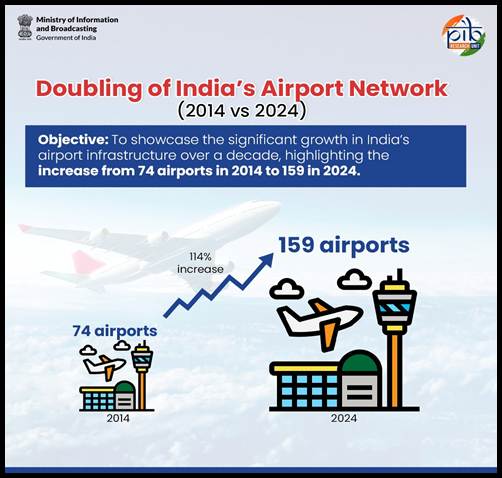
- 08 Aug 2025
In News:
According to the World Air Transport Statistics (WATS) 2024, released by the International Air Transport Association (IATA), India has emerged as the world’s 5th-largest aviation market, handling 211 million passengers in 2024.
Key Findings of WATS 2024
- India: 211 million passengers in 2024, growing 11.1% over 2023.
- Ahead of: Japan (205 million, 18.6% growth).
- Global Rankings:
- United States – 876 million passengers (+5.2%).
- China – 741 million passengers (+18.7%).
- United Kingdom – 261 million passengers.
- Spain – 241 million passengers.
- India – 211 million passengers.
- Busiest Routes (Airport Pairs):
- Global:Jeju–Seoul (South Korea) – 13.2 million passengers.
- India: Mumbai–Delhi – 5.9 million passengers, ranked 7th globally.
- Trend: Asia-Pacific dominated busiest airport-pair rankings.
India’s Aviation Transformation
1. Legislative Reforms
- Protection of Interests in Aircraft Objects Bill, 2025: Aligns leasing system with the Cape Town Convention, lowering leasing costs and boosting investor confidence.
- BharatiyaVayuyanAdhiniyam, 2024: Replaces colonial-era Aircraft Act, 1934; promotes Make in India, simplifies licensing, and aligns with ICAO norms.
2. Infrastructure Expansion
- New Terminals: Foundation laid at Varanasi, Agra, Darbhanga, Bagdogra.
- Greenfield Airports: 12 operationalised since 2014 (e.g., Shirdi, Mopa, Shivamogga); Navi Mumbai and Noida (Jewar) to be operational by 2025–26.
- Investment: ?91,000 crore allocated under National Infrastructure Pipeline (NIP); ?82,600 crore already spent by Nov 2024.
3. Government Initiatives
- UDAN Scheme: Expands regional air connectivity, affordable travel.
- National Civil Aviation Policy (NCAP): Boosts MRO (Maintenance, Repair, Overhaul), airport development, and leasing ecosystem.
- Green Airports Policy: Promotes renewable energy, waste reduction, and carbon neutrality.
- Aircraft Leasing Hub:GIFT City being developed as a global hub for aircraft leasing and financing.
Significance
- India consolidates its position as a major aviation hub, driven by rising passenger traffic, policy reforms, and infrastructure expansion.
- Reflects growing regional connectivity under UDAN and global competitiveness with regulatory modernisation.
- Places India in the top five global aviation markets for the first time.
Asian Giant Tortoise
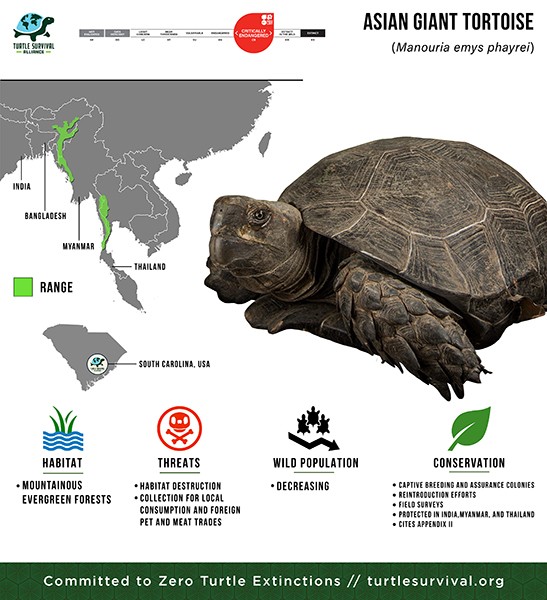
- 08 Aug 2025
In News:
The Asian Giant Tortoise, the largest tortoise in mainland Asia, has been reintroduced into the Zeliang Community Reserve in Peren district, Nagaland. Local youth groups have been engaged as “tortoise guardians” to ensure protection.
About Asian Giant Tortoise
- Scientific name:Manouriaemysphayrei
- Common name: Asian Giant Tortoise / “Small elephants of the forests” (due to their role in forest ecology).
- Lineage: Among the oldest tortoise lineages in the world; display unique nesting behaviour similar to crocodilians, where they protect eggs and regulate incubation temperatures.
- Appearance: Hatchlings are greyish-brown, becoming charcoal-colored in adulthood.
- Diet: Bamboo shoots, tubers, soft vegetation, some invertebrates, and frogs.
Habitat & Distribution
- Habitat: Tropical and subtropical evergreen hill forests.
- Range in India: Northeastern states – Arunachal Pradesh, Nagaland, Assam.
- Global distribution: Bangladesh, Myanmar, Thailand, Malaysia, Indonesia.
Ecological Role
- Seed Dispersal: Helps regenerate forests by dispersing seeds.
- Scavenging: Cleans forest floor by feeding on decomposed organic matter.
Threats
- Hunting and collection for consumption.
- Illegal trade (pets and exotic meat).
- Habitat destruction due to shifting cultivation, deforestation, and infrastructure projects.
Conservation Status
- IUCN Red List: Critically Endangered
- CITES: Appendix II
Conservation Efforts
- Captive Breeding & Assurance Colonies for population recovery.
- Reintroduction Programmes like the recent one in Nagaland.
- Community-based conservation with active participation of locals as guardians.
- Field Surveys to monitor population health and habitat conditions.
Global Artificial Intelligence (AI) City Index 2025
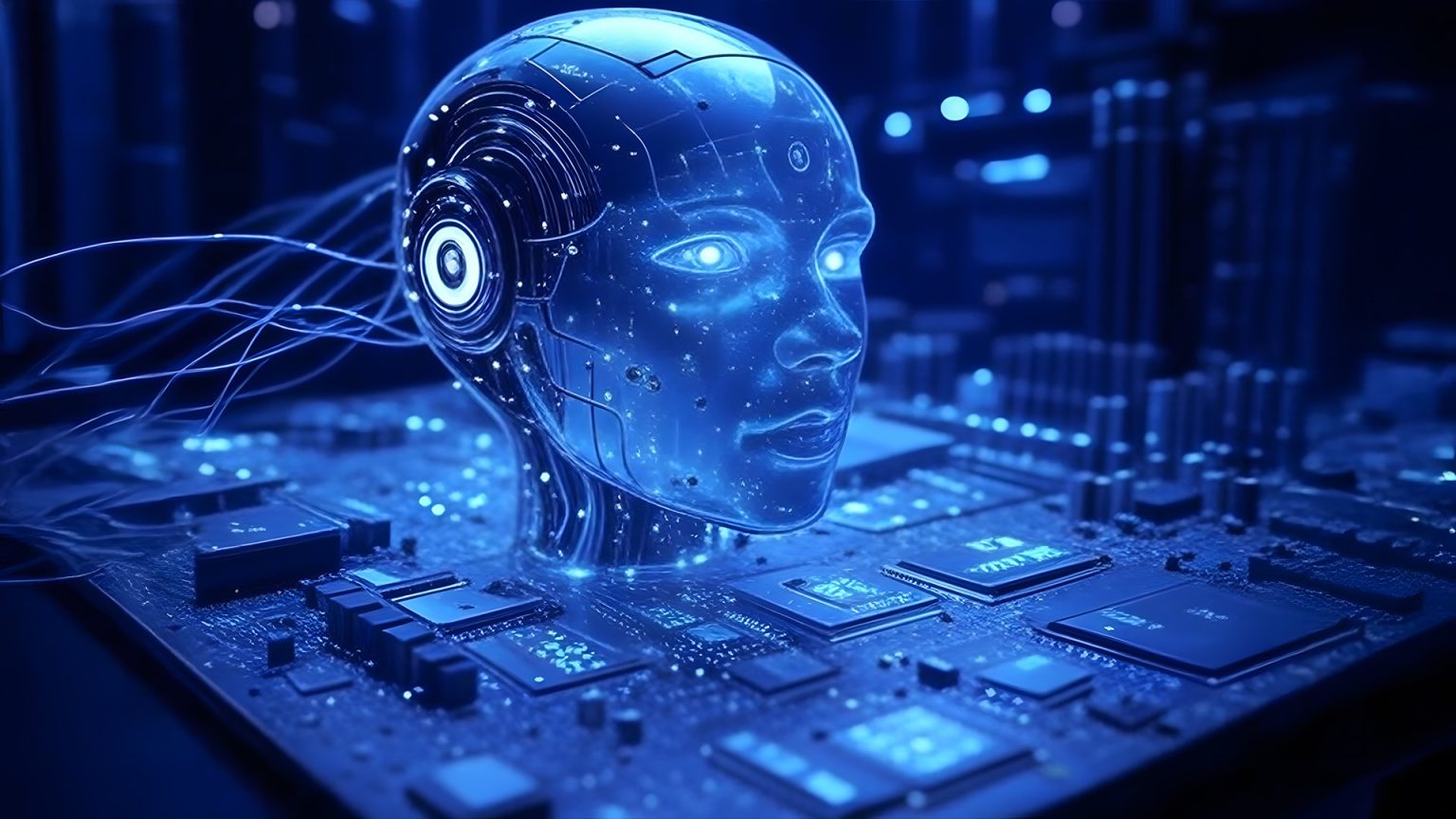
- 08 Aug 2025
In News:
Bengaluru ranks 26thin Global AI City Index, Singapore secures top spot.
About the Index
- Published by: Market research firm Counterpoint Research.
- Objective: Benchmarks global cities on their AI capacity, investment, and innovation.
- Evaluation Criteria:
- AI R&D ecosystem and startup strength
- Investment inflows & public–private partnerships
- AI applications in transport, healthcare, and education
- Data centre growth & digital infrastructure readiness
- Governance and regulatory frameworks
Global Rankings (2025)
- Top 5 Cities: Singapore (1st), Seoul (2nd), Beijing (3rd), Dubai (4th), San Francisco (5th).
- Key Trends:
- Singapore’s success driven by strong startup ecosystem and public–private collaboration in healthcare, telecom, and transport.
- Seoul excels in AI healthcare and education applications.
- Beijing introduced formal AI education for all primary & secondary school students (2025).
- Investments in supercomputing expected to reduce gap between North America and China.
- Tech industry leaders: Microsoft (most active vendor with AI data centres, training, innovation hubs), followed by Google and Amazon expanding their global AI footprint.
India’s Performance
- Bengaluru: Ranked 26th globally – India’s top AI R&D and data centre hub with a vibrant startup ecosystem attracting foreign investment.
- Other Indian Cities:
- Mumbai & Delhi – Leveraging AI for traffic management and public security.
- Chennai & Kolkata – Emerging AI hubs.
- India’s Challenge: Report highlights need for a comprehensive AI roadmap and robust regulatory framework to maximize growth potential.
Significance
- Establishes Bengaluru as India’s AI capital, strengthening its role in digital infrastructure and innovation.
- Reflects India’s growing presence in the global AI landscape while underlining policy gaps.
- Offers lessons from global leaders like Singapore and Seoul on AI integration in governance, education, and healthcare.
India Electric Mobility Index (IEMI)

- 08 Aug 2025
In News:
NITI Aayog launched the India Electric Mobility Index (IEMI), a first-of-its-kind tool developed to comprehensively track and benchmark the progress of States and Union Territories (UTs) in achieving their Electric Mobility goals.
Key Highlights:
- Objective: The IEMIis a first-of-its-kind national tool designed to comprehensively track, evaluate, and benchmark the performance of States and Union Territories (UTs) in their electric mobility transition. It aims to guide sub-national policies, strengthen EV adoption, and align efforts with India’s net-zero by 2070 target.
Core Features of IEMI
- Benchmarking Framework: Scores States/UTs on a 0–100 scale.
- Indicators: Covers 16 indicators under three core themes:
- Transport Electrification Progress – Demand-side adoption in passenger, freight, and public transport.
- Charging Infrastructure Readiness – Deployment of public/private charging stations and supportive policies.
- EV Research & Innovation Ecosystem – R&D, manufacturing capacity, and technological advancements.
- Dashboard Access: Interactive tool for real-time comparison, rankings, and insights.
- Policy Guidance Tool: Identifies gaps, best practices, and investment priorities.
- Cross-Sectoral Utility: Supports inter-ministerial coordination, capacity building, and infrastructure planning.
Trends & Rankings in IEMI 2024
- Top Performers:Delhi, Maharashtra, and Chandigarh led in EV readiness and innovation.
- EV Share in Sales: Grew from 5% (2018) to 7.7% (2024).
- Total EVs on Road: Surpassed 5 million by June 2025, with 12 lakh EVs registered in 2024 alone.
- Charging Infrastructure: Over 25,000 public charging stations installed by October 2024; Karnataka leads in installations.
- Policy Coverage:29 States/UTs have notified EV policies; 4 more are in draft stage.
Significance of IEMI
- Promotes Green Mobility: Aligns state actions with India’s decarbonisation roadmap.
- Encourages Healthy Competition: Enables peer learning and best practice sharing among states.
- Supports Make in India: Strengthens domestic EV manufacturing and innovation clusters.
- Guides Infrastructure Planning: Highlights charging network gaps for targeted rollouts.
- Informs Policy: Helps States/UTs design tailored strategies for equitable e-mobility adoption.
Mount LewotobiLakiLaki
- 07 Aug 2025
In News:
Mount LewotobiLakiLaki, one of Indonesia’s most active volcanoes, erupted in August 2025, spewing volcanic ash up to 18 km into the atmosphere and blanketing nearby villages on the island of Flores. The eruption followed another event just hours earlier, which sent ash plumes 10 km high, accompanied by glowing lava and volcanic lightning.
Key Features of the Eruption
- Scale: Among Indonesia’s largest volcanic events since the 2010 Mount Merapi eruption, which killed over 350 people and displaced hundreds of thousands.
- Hazards Observed:
- Pyroclastic flows of gas, rocks, and lava up to 5 km down the slopes.
- Volcanic debris, including hot gravel, scattered as far as 8 km from the crater.
- Risk of lahars (volcanic mudflows) triggered by heavy rainfall.
- Alert Status: Indonesia’s Geology Agency placed the volcano on the highest alert level since June 18, 2025. The exclusion zone was extended to 7 km radius. Thousands of residents have been permanently relocated due to repeated eruptions, including a deadly series in November 2024 that killed nine and destroyed homes.
Geological Context
- Volcano Type: Part of the Lewotobi twin stratovolcano system (“husband and wife”), comprising:
- LewotobiLakiLaki (male)
- Lewotobi Perempuan(female)
- Location: Island of Flores, Indonesia.
- Height: 1,584 metres (5,197 feet).
- Ring of Fire Connection:
- Situated along the Pacific Ring of Fire (Circum-Pacific Belt), a 40,000 km horseshoe-shaped zone around the Pacific Ocean.
- Hosts 75% of Earth’s volcanoes (over 450) and accounts for 90% of global earthquakes.
India–Nepal Mutual Legal Assistance Pact and Extradition Treaty
- 07 Aug 2025
In News:
India and Nepal have recently finalised a Mutual Legal Assistance (MLA) Agreement in Criminal Matters, marking a significant step in strengthening bilateral security cooperation. The pact is designed to enhance cross-border collaboration in criminal investigations, evidence sharing, and law enforcement.
Mutual Legal Assistance (MLA) in Criminal Matters
- Definition: A bilateral or multilateral treaty that provides a structured framework for cooperation between countries to combat transnational crimes such as terrorism, human trafficking, smuggling, cybercrime, and financial fraud.
- Legal Nature:
- MLAT countries: Legally binding and based on reciprocity.
- Non-MLAT countries: Cooperation remains discretionary.
- India’s Practice:
- Central Authority: Ministry of Home Affairs (MHA), assisted by the Ministry of External Affairs (MEA) when routed through diplomatic channels.
- Existing Network: India has signed MLA treaties with 42 countries (as of November 2019), including the USA (2005), UK (1995), and France (2005).
- Significance for Nepal: Until now, Nepal (along with Bhutan) was the only neighbouring country without such a pact with India, which inadvertently made it a safe haven for criminals.
Extradition Treaty with Nepal
- Current Treaty: India and Nepal are working to revise their outdated 1953 Extradition Treaty.
- Objective of Revision: To overcome legal and administrative hurdles that delay or prevent the extradition of fugitives involved in organised crime and terrorism.
Strategic Importance
- Enhances border management and security cooperation between the two countries.
- Prevents misuse of the open India–Nepal border by criminals and extremists.
- Strengthens India’s regional security framework and supports its fight against transnational crime.
Framework Agreement

- 07 Aug 2025
In News:
The Framework Agreement (FA), signed on 3rd August 2015 between the Government of India and the National Socialist Council of Nagalim–Isak-Muivah (NSCN-IM), remains a central element in the ongoing Naga peace process. Its 10th anniversary (2025) witnessed renewed debates over its sanctity and future.
Background
- The Indo-Naga conflict has persisted for over six decades, rooted in demands for sovereignty and recognition of the Nagas’ unique identity.
- The Government of India first acknowledged the “unique history of the Nagas” in 2002 (Amsterdam talks), paving the way for structured peace negotiations.
The Framework Agreement: Key Provisions
- Recognition of Political Identity: India recognized the Nagas’ distinct historical and cultural identity.
- Shared Sovereignty: Proposed a cooperative model of governance, dividing powers between India and Nagalim while ensuring coexistence.
- Political Equality: Both India’s and Nagalim’s political systems to be respected, avoiding a hierarchical relationship.
- People-Centric Governance: Emphasizes sovereignty residing with the people, aiming for inclusive, democratic self-rule.
- Commitment to Peace: Seeks to end armed struggle and establish a roadmap for lasting peace and autonomy.
Political Significance
- The accord symbolically acknowledges the existence of the “Naga nation.”
- It shifted the discourse from an administrative problem to a political conflict requiring negotiated settlement.
- It was signed in New Delhi in the presence of Prime Minister Narendra Modi and interlocutor RN Ravi.
Current Developments
- On the 10th anniversary (2025), NSCN-IM chairman Q Tuccu reaffirmed commitment to the FA, calling it the “torchbearer of Naga sovereignty”.
- He criticized the Naga National Political Groups (NNPGs)—a coalition of other Naga factions—accusing them of aligning too closely with New Delhi by accepting a settlement under the Indian Constitution (“Agreed Position”).
- Tuccu argued that the NNPGs’ stance compromises the Nagas’ historical and political identity, unlike the FA which ensures recognition of sovereign rights.
- NSCN-IM maintains that the Government of India is slow in implementing the FA, but it remains committed despite challenges.
Operation Akhal
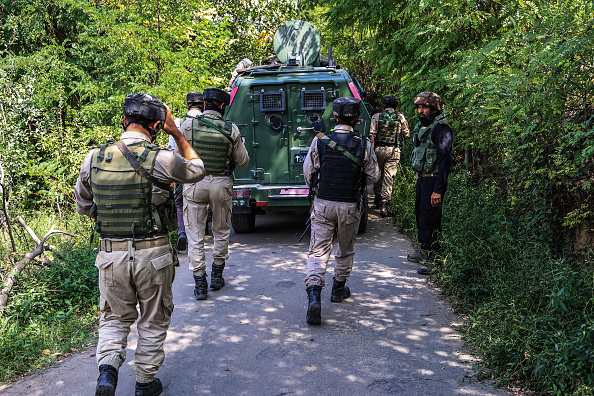
- 07 Aug 2025
In News:
Operation Akhal is a high-intensity counter-terrorism operation being conducted in the AkhalKhulsan forest area of Kulgam district, Jammu & Kashmir. Launched jointly by the Indian Army’s Chinar Corps, the J&K Police, and the Special Operations Group (SOG), the operation reflects India’s continued strategy to dismantle terror networks in the Union Territory.
Objectives
- Neutralize 3–5 terrorists based on intelligence inputs.
- Curb the activities of local terror modules.
- Strengthen internal security in South Kashmir.
- Disrupt associated networks of hawala funding, drug smuggling, and Overground Workers (OGWs).
Key Features
- Nature of Operation: Involves intermittent but calibrated firefights in dense forest terrain, supported by drone surveillance and reinforcements.
- Extended Duration: The operation has continued for several days, indicating the presence of multiple terrorists offering strong resistance.
- Casualties:
- At least three unidentified terrorists have been neutralized.
- Two soldiers — Lance Naik Pritpal Singh and Sepoy Harminder Singh — succumbed to injuries sustained in the encounter, highlighting the intensity of the conflict.
- Security Measures: Strict cordon around suspected hideouts, enhanced surveillance, and troop deployment to block escape routes.
Broader Context
- Operation Akhal is part of a post-Pahalgam crackdown on terror groups and their ecosystem in South Kashmir.
- Reflects India’s evolving counter-terror strategy combining ground operations, intelligence-based targeting, and crackdown on financial/logistical support systems.
Right to Repair and Repairability Index in India
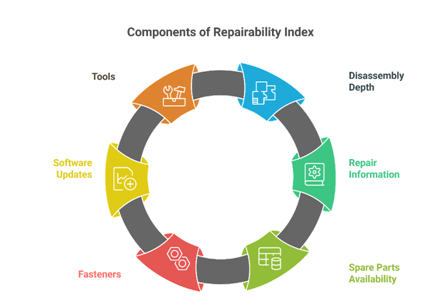
- 07 Aug 2025
In News:
India has accepted the proposal to introduce a Repairability Index for electronics, aligning with the global movement to strengthen the Right to Repair. This is seen as a step towards sustainable consumption and consumer empowerment, but concerns remain about the neglect of India’s vibrant informal repair economy, which is rich in tacit and generational knowledge.
Understanding Right to Repair
- Definition: The Right to Repair ensures that consumers can repair, modify, or access affordable third-party repair services for their products.
- Global Trends:
- The European Union mandates access to spare parts and repair manuals.
- Several U.S. states have legislated consumer rights for repair.
- The principle supports UN SDG-12 (Responsible Consumption and Production).
- India’s Framework:In 2023, the Department of Consumer Affairs launched a Right to Repair portal, covering electronics, automobiles, and farm equipment.
Significance Beyond Consumer Rights
- Tacit Knowledge Systems: Informal repairers acquire skills through observation and mentorship, not formal certifications. Repair hubs like Karol Bagh (Delhi) and Ritchie Street (Chennai) embody this tradition.
- Cultural Identity: Repair is not just technical work but part of India’s jugaad culture, reflecting frugality, resource reuse, and indigenous innovation.
- Sustainability: Repair extends product life, prevents premature disposal, and reduces e-waste burden.
- Unrecognized Workforce: Informal repairers, despite their contribution to the circular economy, remain excluded from labour laws and digital policy frameworks.
Policy and Digital Gaps
- E-Waste Rules, 2022: Focus primarily on recycling while overlooking repair as the first line of defence.
- Skill India (PMKVY): Training modules remain rigid and unsuitable for improvisational, diagnostic repair work.
- AI and Digital Public Infrastructure (DPI) Policies: Emphasize structured data but ignore human-led, tacit repair knowledge.
- Education (NEP 2020): While advocating experiential learning, it fails to recognize repair work as skill education.
- Legal Support: Informal repairers lack certification pathways, formal rights, or recognition within the digital economy roadmap.
Towards an Inclusive Repair Ecosystem
- Repairability Standards: Embed repair norms in AI systems, public procurement, and hardware design.
- Expanded Right to Repair:
- Introduce product classifications by repairability.
- Ensure access to manuals and spare parts.
- Promote community repair hubs.
- Skill Recognition: Integrate informal repairers into e-Shram, and design flexible reskilling modules.
- Knowledge Preservation: Use AI tools (LLMs, decision trees) to digitize tacit repair knowledge and make it shareable.
- Policy Convergence: Collaborate across ministries — Labour (MoLE), Electronics & IT (MeitY), Rural Development (MoRD) — for a unified repair ecosystem.
Single Window System for Appointment of State DGPs
- 06 Aug 2025
In News:
The Union Government has notified a Single Window System (SWS) to streamline the appointment of State Directors General of Police (DGPs)/Heads of Police Force (HoPFs). This move seeks to ensure transparency, uniformity, and compliance with Supreme Court directives inPrakash Singh vs Union of India (2006) and the Ministry of Home Affairs (MHA) guidelines.
Key Features of the SWS
- Standardization: Provides a checklist and uniform formats for States to submit proposals.
- Eligibility Certification: A Secretary-rank officer must certify that officers proposed for empanelment fulfill criteria, including a minimum of 6 months residual service.
- Timely Submission: States are mandated to send proposals at least 3 months before the anticipated vacancy of the DGP/HoPF.
Constitutional and Legal Framework
- State Subject: Police is a State subject under the 7th Schedule of the Constitution.
- Superintendence: As per Section 3 of the Police Act, 1861, the superintendence of police lies with the State Government.
- District Level: A dual control system exists—authority is shared between the District Magistrate (executive) and the Superintendent of Police (police administration).
- State Police Leadership: State police forces are generally headed by officers of the DGP rank.
India–EFTA Trade and Economic Partnership Agreement (TEPA)
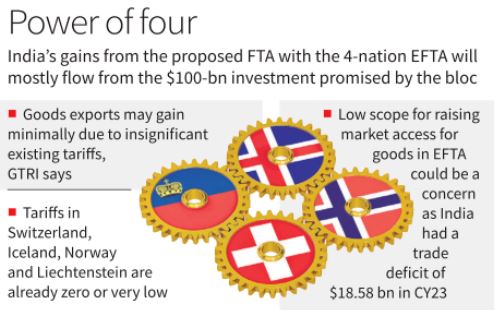
- 06 Aug 2025
In News:
The Trade and Economic Partnership Agreement (TEPA) between India and the European Free Trade Association (EFTA) — comprising Iceland, Liechtenstein, Norway, and Switzerland — will come into force on 1 October 2025.
Key Features of TEPA
- Strategic Investment Commitment
- Legally binding commitment of USD 100 billion FDI in India over 15 years (USD 50 billion in first 10 years + USD 50 billion in next 5 years).
- Expected to generate 1 million jobs.
- Excludes foreign portfolio investment (FPI); sovereign wealth funds exempted.
- India can withdraw tariff concessions if commitments are not met.
- Market Access & Tariff Concessions
- EFTA: 92.2% tariff lines offered, covering 99.6% of India’s exports (100% non-agri products + concessions on processed agri products).
- India: 82.7% tariff lines offered, covering 95.3% of EFTA exports (including gold, which retains existing duty).
- Duty-free access: Indian basmati and non-basmati rice exports, without reciprocity.
- Exclusions: Dairy, soya, coal, and sensitive agri products; protection given to sectors linked with PLI schemes (e.g., pharma, medical devices, processed food).
- Concessions: Cheaper Swiss chocolates, wines, luxury watches (though wines < USD 5 excluded to protect Indian wineries).
- Services & Professional Mobility
- Boosts Indian services exports: IT, business, cultural, sporting, educational, and audiovisual services.
- Mutual Recognition Agreements (MRAs): Nursing, accountancy, and architecture professionals to gain work access in EFTA countries.
- Legal & Institutional Framework
- Covers 14 chapters: market access, trade facilitation, investment promotion, IPR, sustainable development.
- Protects India’s generic medicines; prevents evergreening of patents.
- Promotes technology collaboration but not compulsory technology transfer.
About the European Free Trade Association (EFTA)
- Established: 1960 (Stockholm Convention).
- Members: Iceland, Liechtenstein, Norway, Switzerland (not part of the EU).
- Aim: Promote free trade and economic integration among members and global partners.
India–EFTA Trade Relations
- India is EFTA’s 5th largest trading partner (after EU, US, UK, China).
- Trade Volume (2024–25): USD 24.4 billion.
- India’s exports: USD 1.96 billion (chemicals, iron & steel, precious stones, sports goods, bulk drugs).
- Imports from EFTA: USD 22.45 billion (mainly gold, silver, coal, pharma, vegetable oil, medical equipment, dairy machinery).
- Deficit: Large trade deficit, primarily due to gold imports from Switzerland (USD 20.7 billion in 2021–22).
- India–EFTA Desk: Set up by Invest India as a single-window platform to facilitate investments under TEPA.
Krasheninnikov Volcano
- 06 Aug 2025
In News:
The Krasheninnikov volcano, located in Russia’s Kamchatka Peninsula, recently erupted for the first time in recorded history. The eruption followed a nearby magnitude 8.8 earthquake and released ash plumes reaching 20,000 ft (≈6,000 m) into the atmosphere. Authorities issued an “orange” aviation hazard code due to potential risks to air traffic.
About Krasheninnikov Volcano
- Type: Active stratovolcano (composite volcano).
- Height: ~1,856–1,886 m.
- Structure: Formed within a 9 km wide collapsed caldera created by a massive eruption ~39,600 years ago that expelled 50 cubic km of dacitic pumice.
- Cones: Contains two eruptive cones; the southern cone has an 800 m wide, 140 m deep crater.
- Past Activity: Last known eruption occurred ~400–600 years ago.
Kamchatka Peninsula – Volcanic Hotspot
- Lies along the Pacific “Ring of Fire”, one of the world’s most seismically active zones.
- Home to 114 Holocene volcanoes (eruptions recorded in the last ~12,000 years).
- Known for frequent explosive eruptions due to subduction of the Pacific Plate beneath the Eurasian Plate.
Stratovolcano – Key Features
- Steep, conical structure with alternating layers of lava and pyroclastic deposits.
- Typically found above subduction zones (e.g., Pacific Ring of Fire).
- Characterized by explosive eruptions due to viscous andesite/dacite lavas that trap gases.
- Account for about 60% of Earth’s volcanoes.
- Example: Mount Fuji (Japan), Mount Vesuvius (Italy), Mount St. Helens (USA).
Significance of 2025 Eruption
- First recorded activity of Krasheninnikov highlights the unpredictability of dormant volcanoes.
- Demonstrates the link between major seismic events and volcanic eruptions in tectonically active zones.
- Raises concerns for aviation safety, regional ecology, and monitoring of Ring of Fire volcanism.
Slovenia
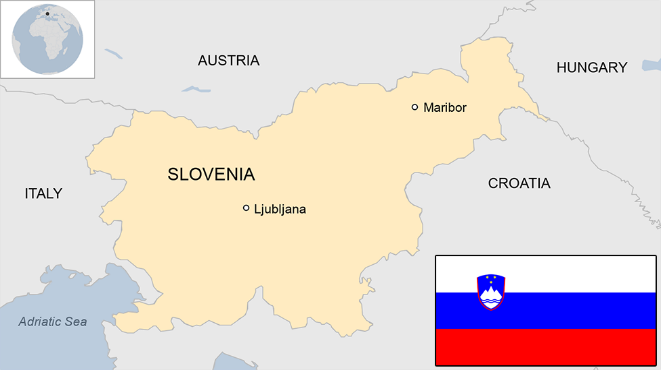
- 06 Aug 2025
In News:
Slovenia has announced a complete ban on the import, export, and transit of weapons to and from Israel in response to Israel’s military actions in Gaza. This makes it the first European Union (EU) member state to enforce a blanket arms embargo on Israel.
Context and Diplomatic Stand
- Slovenia has frequently criticized Israel for alleged atrocities in Gaza.
- In June 2024, Slovenia’s parliament recognisedPalestinian statehood, joining Ireland, Norway, and Spain.
- In July 2024, it barred two far-right Israeli ministers from entering the country, citing “incitement of violence” and “genocidal statements.”
- Although Slovenia’s arms trade with Israel is minimal, the decision carries symbolic diplomatic weight, intended to pressure Israel amid growing international condemnation.
Other European countries have taken partial measures:
- UK (2024): Suspended export of some weapons that could breach international law.
- Spain (2023): Halted arms sales.
- Netherlands, France, Belgium: Tightened regulations or faced legal challenges, but none imposed a total embargo like Slovenia.
Slovenian Prime Minister Robert Golob emphasized that Slovenia would act unilaterally in the absence of collective EU action, accusing the EU of disunity in addressing the humanitarian crisis in Gaza.
About Slovenia
- Location: Central Europe; formerly part of Yugoslavia.
- Capital: Ljubljana.
- Borders: Austria, Hungary, Croatia, Italy; coastline along the Adriatic Sea (Gulf of Venice).
- Memberships: Joined EU and NATO in 2004; uses the Euro.
- Physical Features:
- Alpine Highlands (~40% of territory) – includes Julian Alps, Karavanke, Kamnik-Savinja Alps. Highest peak: Mount Triglav (2,864 m).
- Karst Plateau – globally renowned for caves, sinkholes, underground rivers.
- Subpannonian Plains – fertile alluvial soils; rivers Sava, Drava, Mura drain toward the Danube.
- Slovene Littoral – 47 km coastline; major port Koper.
Financial Sector Changes from August 2025
- 06 Aug 2025
In News:
India’s financial ecosystem is undergoing significant operational changes aimed at strengthening stability, efficiency, and consumer protection. From August 1, 2025, several regulatory and institutional reforms—spanning digital payments, credit cards, fuel pricing, trading hours, and monetary policy—are set to reshape the financial landscape.
UPI Operational Reforms by NPCI
The National Payments Corporation of India (NPCI), which manages the Unified Payments Interface (UPI), has introduced revised operational rules to reduce transaction delays and prevent system overload during peak hours. UPI, India’s flagship digital payment platform, has emerged as the backbone of cashless transactions with over 14 billion monthly transactions (2025 data).
Key reforms effective from August 1, 2025:
- Balance Check Limit: Maximum 50 balance enquiries per day per app.
- Linked Account Enquiries: Limited to 25 per day per app.
- Auto-Pay Transactions: Permitted only during non-peak hours (before 10 AM, 1–5 PM, after 9:30 PM).
- Transaction Status Checks: Restricted to 3 per transaction, with a mandatory 90-second gap.
- Beneficiary Name Display: Recipient’s registered bank name will be shown before confirmation to curb fraud.
These reforms reflect an effort to balance user convenience with systemic efficiency while reducing risks of fraudulent transfers.
Credit Card Insurance Changes by SBI
The State Bank of India (SBI), India’s largest lender, has announced withdrawal of complimentary air accident insurance cover on several co-branded credit cards. Earlier, insurance covers of ?1 crore (ELITE series) and ?50 lakh (PRIME/Platinum series) were provided. The discontinuation reflects banks’ attempts to rationalize costs in a competitive credit market, but it also raises concerns regarding customer protection.
Fuel Price Revisions
Prices of LPG cylinders, CNG, PNG, and aviation turbine fuel (ATF) are subject to monthly review. Effective August 1, 2025, fresh revisions are expected in line with global crude trends and domestic subsidy policies. Given that LPG and CNG are crucial for households and transport, even marginal adjustments influence inflation and consumer spending.
Extension of Trading Hours
The Reserve Bank of India (RBI) has extended trading hours for money market instruments to deepen liquidity and align with global practices:
- Call Money Market: Extended to 9:00 AM – 7:00 PM (effective July 1, 2025).
- Market Repo & Tri-Party Repo (TREPs): Extended to 9:00 AM – 4:00 PM (effective August 1, 2025).
This reform is expected to improve liquidity management for banks and non-banking financial institutions, enhancing the efficiency of short-term borrowing and lending.
National Waterway-57 (River Kopili)
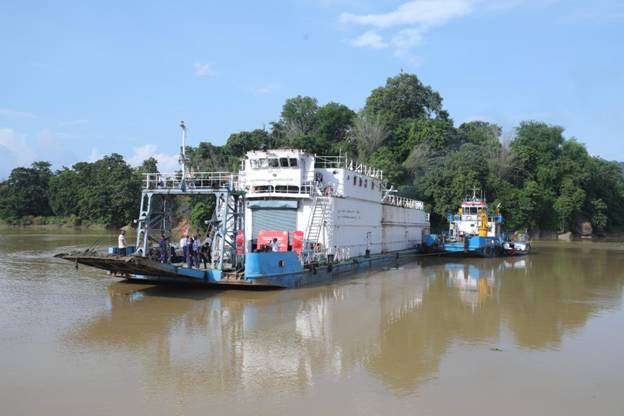
- 05 Aug 2025
In News:
In a landmark development for sustainable logistics in the Northeast, the Kopili River (National Waterway-57) was operationalised with the maiden cargo movement of 300 MT of cement from Chandrapur (Kamrup) to Hatsingimari (South Salmara, Assam).
About the Kopili River
- Origin:Saipong Reserve Forest in the Borail Range, North Cachar Hills, at 1,525 m altitude.
- Length: 256 km (78 km along the Assam–Meghalaya border; 178 km in Assam).
- Basin Coverage: Flows through Meghalaya and Assam, making it an interstate river.
- Significance: Largest south bank tributary of the Brahmaputra in Assam; traverses North Cachar Hill, KarbiAnglong, Nagaon, and Morigaon districts.
- Agricultural Zone: Supports cultivation of rice (winter, summer, autumn), wheat, mustard, and rapeseed in Kamrup and surrounding areas.
Strategic and Policy Significance
- Economic Impact: Reduces road congestion, lowers logistics costs, and provides an efficient alternative for bulk cargo. The trial run replaced the equivalent of 23 truckloads of cement.
- Environmental Gains: Inland water transport curbs emissions and promotes sustainable logistics.
- Regional Development: Enhances connectivity for riverine communities, boosts trade, and unlocks economic opportunities in Assam.
- National Integration: Aligns with Maritime India Vision 2030 and PM Gati Shakti, which seek to create multimodal, integrated transport infrastructure.
Pradhan Mantri National Dialysis Programme (PMNDP)

- 05 Aug 2025
In News:
The Pradhan Mantri National Dialysis Programme (PMNDP) has been significantly expanded by the Government of India and is now operational in all 36 States and Union Territories, covering 751 districts. As of June 30, 2025, a total of 1,704 dialysis centres are functional under the programme.
Background and Objectives
- Launched in 2016, the PMNDP aims to provide free dialysis services to patients suffering from end-stage kidney failure, with special focus on Below Poverty Line (BPL) beneficiaries.
- It is implemented under the National Health Mission (NHM) in Public-Private Partnership (PPP) mode.
- The programme addresses the rising burden of chronic kidney disease and aims to ensure equitable access to life-saving renal care across India.
Key Features
- Dialysis Services: Supports both Haemodialysis and Peritoneal Dialysis.
- Infrastructure Expansion: Initially recommended at all district hospitals, with flexibility to scale down to Community Health Centres (CHCs), especially in remote and tribal regions.
- PMNDP Portal: Integrates all NHM-supported dialysis centres, facilitates creation of a renal registry, and ensures service portability within states (“One State–One Dialysis”) and eventually nationwide (“One Nation–One Dialysis”).
- Funding Mechanism: The NHM provides financial assistance to States/UTs for setting up and operating dialysis centres.
- Implementation Strategy: Expansion is based on gap assessments carried out by States/UTs as part of their annual Programme Implementation Plans (PIPs).
Significance
- Health Equity: Extends life-saving kidney care to vulnerable groups, including rural and tribal populations.
- Cost Reduction: Provides free dialysis, reducing the out-of-pocket burden on families.
- Data Integration: The renal registry aids in epidemiological tracking and planning of kidney health interventions.
- Public Health Impact: Strengthens India’s healthcare delivery under Universal Health Coverage (UHC) goals.
‘Matri Van’ initiative
- 05 Aug 2025
In News:
The Government of India has launched the ‘Matri Van’ initiative in Gurugram under the ‘Ek Ped MaaKe Naam’ programme, symbolizing ecological preservation and community participation. The project was inaugurated by the Union Minister for Environment, Forest and Climate Change, Shri Bhupender Yadav, and the Union Minister for Housing and Urban Affairs and Power, Shri Manohar Lal, during Van Mahotsav 2025.
About the Initiative
- Location & Scale: Spread over 750 acres in the Aravalli hill area along the Gurugram-Faridabad road.
- Concept: A theme-based urban forest aimed at nurturing generations through mother-nature-inspired green efforts.
- Vision: To enhance biodiversity, public well-being, and urban sustainability, while serving as the “heart and lung of Delhi-NCR.”
- Collaboration: Developed through multi-stakeholder participation, including CSR partners, Resident Welfare Associations (RWAs), NGOs, MNCs, school children, and government bodies.
Ecological and Social Significance
- Restoration of degraded land by removing invasive Kabuli Kikar (Prosopis juliflora).
- Plantation of native Aravalli species such as Dhak, Amaltash, Neem, Bargad, Peepal, Gullar, Pilkhan, Khair, Semal, and bamboo.
- Development of theme-based groves, including:
- Bodhi Vatika (sacred fig species like Bargad, Peepal),
- Bamboosetum (bamboo species),
- Aravalli Arboretum,
- PushpVatika (flowering trees),
- Sugandh Vatika (fragrant species),
- Medicinal Plants Vatika,
- Nakshatra and RashiVatika,
- Cactus Garden,
- Butterfly Garden.
Facilities and Infrastructure
- Eco-tourism and community spaces: nature trails, cycle tracks, yoga zones, gazebos, and sitting areas.
- Environmental safeguards: treated water irrigation systems, sprinklers, and waterbodies to aid water conservation and urban flood prevention.
- Urban amenities: parking spaces, public facilities, and accessibility features.
Broader Environmental Vision
- Linked to Mission LiFE (Lifestyle for Environment) with components like:
- Saving food, water, and energy,
- Solid waste and e-waste management,
- Ban on single-use plastics,
- Promotion of healthy lifestyles.
- Complements India’s renewable energy transition, with non-fossil fuel power now accounting for over 50% of the national energy mix.
- Supports Prime Minister’s vision of rejuvenating the Aravalli ecosystem through plantation of native species.
Significance for Delhi-NCR
- Acts as a natural carbon sink to counter rising emissions.
- Provides a green lung to improve air quality in a highly polluted urban region.
- Promotes eco-tourism and environmental education through biodiversity parks, wildlife safaris, and thematic groves.
- Offers citizens a serene, stress-free environment, strengthening the image of Gurugram as a model “Millennium City.”
Investor Education and Protection Fund Authority (IEPFA)
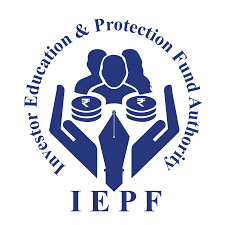
- 05 Aug 2025
In News:
The Investor Education and Protection Fund Authority (IEPFA), established in 2016 under the Companies Act, 2013, functions under the Ministry of Corporate Affairs (MCA) with the mandate of safeguarding investor interests, refunding unclaimed financial assets, and promoting financial literacy across India.
Mandate and Fund Structure
The Investor Education and Protection Fund (IEPF) consists of amounts that remain unclaimed for seven years, including:
- Unpaid dividends,
- Application money due for refund,
- Matured deposits and debentures,
- Accrued interest on investments,
- Grants and donations received from government or other entities.
The fund is utilized to refund unclaimed shares/dividends to rightful investors and to spread financial awareness among citizens.
Recent Developments: Integrated Portal
IEPFA is in the final phase of testing its Integrated Portal, a unified digital platform aimed at:
- Streamlining claim processes for unclaimed shares/dividends,
- Enhancing accessibility for both investors and companies,
- Integrating stakeholders such as depositories and the Public Financial Management System (PFMS).
Companies have been urged to upload their IEPF-1/7 SRNs with prescribed templates to enable smooth data verification and claim processing.
Key Features of the New System
- Simplified claims for low-value refunds through reduced documentation.
- Integrated Call Center to strengthen grievance redressal and ensure responsive communication with stakeholders.
- Temporary disruptions may occur during transition, but the reforms promise faster, transparent, and investor-friendly outcomes.
Investor Awareness Initiatives
IEPFA also undertakes extensive financial literacy campaigns through programs like:
- Niveshak Didi,
- Niveshak Panchayat,
- NiveshakShivir.
These initiatives empower citizens, particularly in rural and semi-urban areas, to make informed financial decisions and protect themselves from fraud and mismanagement.
Significance
- For Investors: Easier access to unclaimed assets and improved grievance redressal.
- For Companies: Structured compliance framework and digital integration with regulators.
- For Governance: Strengthens India’s financial ecosystem by combining investor protection with financial literacy.
Nahargarh Wildlife Sanctuary
- 04 Aug 2025
In News:
The Rajasthan Forest Department has recently redrawn the boundaries of the Nahargarh Wildlife Sanctuary (NWS), located near Jaipur, sparking controversy among conservationists and legal experts. The move, alleged to benefit luxury hotels and commercial establishments within the sanctuary and its Eco-Sensitive Zone (ESZ), has raised questions about legality, ecological safeguards, and governance.
About Nahargarh Wildlife Sanctuary
- Location: ~20 km from Jaipur, under the Aravalli range.
- Size: Originally ~720 hectares; currently notified as 6,025.74 hectares across 16 villages.
- History: Named after Nahargarh Fort, built by Maharaja Sawai Jai Singh II in the 18th century.
- Nahargarh Biological Park: Part of the sanctuary, noted for its lion safari.
- Flora: Dry deciduous forests, scrublands, grasslands.
- Fauna: Leopards, deer, sloth bears, wild boars, lions, tigers, reptiles like pythons and monitor lizards, and diverse birdlife including owls, eagles, and peacocks.
The Controversy
- Procedural Lapses
- Under Section 26A of the Wildlife Protection Act, 1972, any change in sanctuary boundaries requires approval from the National Board for Wildlife (NBWL).
- Experts cite the 2013 Supreme Court judgment (Centre for Environmental Law, WWF-India vs Union of India), which mandated NBWL clearance for altering protected area limits.
- However, Rajasthan submitted revised maps to the National Green Tribunal (NGT) in July 2025 without NBWL’s recommendation.
- Alleged Motivations
- Activists claim the revised map excludes “Described Areas” (revenue lands held by public and private bodies) while retaining only Reserved Forest patches.
- This adjustment allegedly protects existing luxury hotels and other constructions in the ESZ, some of which earlier faced demolition orders for violations.
- Government’s Justification
- Officials argue the 1980 notification used “grossly approximate” boundary descriptions.
- Over four decades, urbanisation and topographical changes blurred the original limits.
- A GIS-based remapping exercise using high-resolution satellite imagery and land records was undertaken, and state approval was granted in July 2025.
BlueBird Communications Satellite
- 04 Aug 2025
In News:
Following the successful NISAR (NASA–ISRO Synthetic Aperture Radar) mission, the Indian Space Research Organisation (ISRO)is preparing for its next major collaboration with the United States: the launch of the BlueBird communications satellite. The mission highlights India’s growing role as a reliable global launch partner and the expanding scope of Indo–U.S. space cooperation.
The BlueBird Satellite
- Developer: U.S.-based AST SpaceMobile
- Type: Advanced communications satellite designed for direct satellite-to-smartphone connectivity
- Weight: ~6,000 kg
- Antenna: Innovative 64-square-metre antenna array for high-capacity communication
- Orbit: Low Earth Orbit (LEO)
- Technology:
- Enables direct calling and broadband access from space without the need for ground-based mobile towers
- Supports beams up to 40 MHz capacity
- Offers peak speeds of up to 120 Mbps
- Service Plan: After deployment, BlueBird satellites will provide non-continuous broadband cellular service initially in the U.S. and select global markets.
Launch Details
- Launch Vehicle: LVM3 (Launch Vehicle Mark-3), ISRO’s heaviest rocket, formerly known as GSLV Mk-III
- Launch Site: Satish Dhawan Space Centre, Sriharikota
- Timeline: Expected launch in the next 3–4 months (as per ISRO chairman V. Narayanan)
Strategic Significance
- For India–U.S. Cooperation:
- Follows the joint NISAR Earth observation mission, reinforcing strategic space ties.
- Strengthens India’s position as a preferred partner for global commercial satellite launches.
- For India’s Space Economy:
- Enhances ISRO’s reputation in heavy-lift commercial launches, particularly with LVM3.
- Showcases India’s cost-effective access to space, attracting further foreign collaborations.
- For Global Communication Technology:
- Marks a breakthrough in direct-to-device (D2D) connectivity, reducing dependency on ground infrastructure.
- Could help expand mobile and broadband coverage to remote and underserved regions worldwide.
Oreshnik Hypersonic Missile
- 04 Aug 2025
In News:
In August 2025, Russian President Vladimir Putin announced that the Oreshnik hypersonic missile—a new-generation intermediate-range ballistic missile—has entered production and military service. Plans are underway to deploy the system in Belarus by the end of 2025, signalling a major escalation in Russia’s standoff with NATO amid the Ukraine conflict.
Key Features
- Type: Intermediate-range, solid-fuel, mobile, hypersonic ballistic missile
- First Operational Use: November 2024, in a strike on Ukraine’s Pivdenmashdefence facility at Dnipro
- Speed: Capable of reaching Mach 10 (10 times the speed of sound)
- Range: Approx. 5,000 km (3,100 miles), bringing the entirety of Europe within its strike zone
- Warhead Capability:
- Carries conventional or nuclear warheads
- Equipped with Multiple Independently Targetable Re-entry Vehicles (MIRVs), allowing simultaneous strikes on multiple targets
- Strategic Advantage: Hypersonic speed, mid-flight manoeuvrability, and MIRV capability make it virtually immune to interception by current Western missile defence systems
Strategic Context
- Belarus as a Forward Base:
- Belarus shares a 673-mile border with Ukraine, making it strategically vital.
- It already hosts Russian troops and tactical nuclear weapons.
- Deployment of Oreshnik here allows Moscow to project power deeper into Europe.
- Nuclear Security Pact (2023):
- Russia and Belarus signed an agreement placing Belarus under Russia’s nuclear umbrella.
- Russia retains the right to use nuclear weapons stationed in Belarus if “aggression” is perceived.
- Belarus has reportedly hosted “several dozen” Russian nuclear weapons since late 2024.
- Geopolitical Implications:
- Russia warned NATO against supplying Ukraine with long-range weapons capable of striking inside Russia.
- Putin cautioned that Russia could retaliate with systems like Oreshnik “even beyond Ukraine.”
- By suggesting that conventional Oreshnik strikes could be as devastating as nuclear attacks, Moscow is raising deterrence levels against the West.
Implications for Global Security
- Erosion of Arms Control: With the collapse of Cold War-era treaties like the INF Treaty (1987), weapons such as Oreshnik operate in a largely unregulated environment.
- Escalation of NATO–Russia Rivalry: The missile’s deployment in Belarus expands Russia’s strike capability across Europe, heightening NATO security concerns.
- Nuclear Threshold Ambiguity: Oreshnik’s dual capability (conventional and nuclear) blurs the line between conventional warfare and nuclear escalation.
- Arms Race in Hypersonics: The U.S., China, and other powers are also developing hypersonic weapons, intensifying competition in next-generation strategic arms.
Polavaram–Banakacherla Link Project (PBLP)
- 04 Aug 2025
In News:
The bifurcation of Andhra Pradesh in 2014 created prolonged disputes between Andhra Pradesh (AP) and Telangana over sharing the waters of the Krishna and Godavari rivers. Issues have resurfaced with Andhra Pradesh’s proposal of the Polavaram–Banakacherla Link Project (PBLP), opposed by Telangana on legal and ecological grounds.
In July 2025, the Union Government decided to set up two dedicated river management boards—the Krishna River Management Board (KRMB) at Amaravati and the Godavari River Management Board (GRMB) at Hyderabad. Both will include Central officials, technical experts, and representatives from the two states.
Polavaram–Banakacherla Link Project (PBLP)
- Objective: Divert 200 TMC of surplus Godavari floodwaters to drought-prone Rayalaseema by linking the Polavaram reservoir to the Banakacherla regulator in Kurnool district.
- Water Transfer Mechanism:
- Draw water from Polavaram Dam
- Convey through Prakasam Barrage → lift to Bollapalli reservoir
- Tunnel through the Nallamala hills → release into Banakacherla reservoir
- Significance: Strengthens irrigation, drinking water supply, and agricultural sustainability; aligns with national schemes such as Jal Jeevan Mission, Blue Revolution, and Make in India.
Telangana’s Concerns
- Violation of the Andhra Pradesh Reorganisation Act, 2014 – which requires prior approval of the Apex Council, KRMB, and CWC for new inter-state river projects.
- Disputed “Surplus” Claim – Telangana contests Andhra’s claim of 200 TMC surplus Godavari waters, arguing no adjudicatory body has approved such diversion.
- Environmental and Legal Clearances – Though the Polavaram Project got clearance in 2005, the Expert Appraisal Committee has called for fresh scrutiny, especially due to submergence concerns in Odisha and Chhattisgarh.
- Unauthorised Inter-Basin Diversion – Godavari-to-Krishna transfer without mutual consent could undermine Telangana’s own projects.
- Breach of Cooperative Federalism – Telangana sees unilateral action by Andhra as bypassing consensus-driven water governance.
Consensus Achieved in July 2025 Talks
- Telemetry Systems: Both states agreed to install real-time monitoring devices at reservoirs and projects to ensure transparency in water usage.
- Srisailam Project Repairs: Andhra agreed to undertake crucial maintenance at this shared project.
- Board Reorganisation: KRMB’s office to shift to Amaravati/Vijayawada for better oversight.
- Joint Committee: High-level committee of central, state, and technical experts to study outstanding issues and recommend equitable solutions.
Legal and Institutional Mechanisms for Inter-State Water Disputes
- Constitutional Provisions:
- Article 262: Parliament may legislate for adjudication of inter-state water disputes; can also bar courts’ jurisdiction.
- State List (Entry 17): States control water-related issues.
- Union List (Entry 56): Centre can regulate inter-state rivers in the national interest.
- Statutory Framework:
- River Boards Act, 1956: Allows River Boards for coordinated development; not implemented in practice.
- Inter-State Water Disputes Act, 1956: Provides for tribunals. Amendments in 2002 mandated quicker constitution of tribunals (1 year) and decisions within 3 years.
- Judicial Role: Despite Article 262(2), the Supreme Court has intervened in interpretation and implementation of tribunal awards (e.g., Mahadayi Water Dispute, 2018).
A New Approach to Treating Liver Cirrhosis
- 04 Aug 2025
In News:
A team of Indian scientists may have found a way to improve the drainage capacity of lymphatic vessels in the liver and intestine that fails in case of cirrhosis, by using nanocarriers filled with a powerful protein called VEGF-C.
Understanding Liver Cirrhosis
Cirrhosis is the advanced stage of chronic liver disease where healthy tissue is replaced by scar tissue due to prolonged inflammation. This structural distortion affects both blood and lymphatic vessels in the liver and intestine, impairing circulation and fluid balance.
Causes:
- Excessive alcohol consumption
- NASH (Non-Alcoholic Steato-Hepatitis)
- Chronic viral infections such as Hepatitis B and C
Symptoms (often in advanced stages): extreme fatigue, loss of appetite, easy bruising or bleeding, swelling in legs/ankles (edema), and abdominal fluid accumulation (ascites).
The Problem of Lymphatic Dysfunction
In cirrhosis, lymphatic vessels (mesenteric lymphatic vessels or mLVs) become dilated and dysfunctional. Normally, these vessels drain interstitial fluid, proteins, and immune cells back into venous blood.
- In cirrhosis, lymph production increases nearly 30-fold due to portal hypertension and liver congestion.
- Dysfunctional lymph flow leads to ascites (abdominal fluid buildup), one of the most serious complications of decompensated cirrhosis.
- Currently, there is no effective therapy to correct this lymphatic dysfunction.
The VEGF-C Based Breakthrough
A joint team from the Institute of Liver and Biliary Sciences (ILBS), New Delhi and the National Institute of Pharmaceutical Education and Research (NIPER), Guwahati has developed a novel therapy using Vascular Endothelial Growth Factor-C (VEGF-C).
- Role of VEGF-C: A key pro-lymphangiogenic factor that binds to VEGFR-3 receptors, stimulating the growth of new lymphatic vessels and enhancing drainage.
- Challenge: VEGF-C has a short half-life, is hydrophilic, and can cause systemic side effects.
The Innovation: Nanocarriers
- Scientists at NIPER designed reverse micelle-based nanocarriers to encapsulate VEGF-C, ensuring targeted delivery to gut lymphatic vessels.
- These nanocarriers specifically bind to VEGFR-3 homodimers, maximizing efficacy and minimizing side effects.
- The formulation was delivered orally in animal models, ensuring uptake by intestinal lymphatic vessels.
Findings (Animal Studies)
- Significant increase in mesenteric lymph drainage
- Reduction in ascites and portal hypertension
- Enhanced cytotoxic T-cell immunity in lymph nodes
- Reduction in local and systemic bacterial load
Significance and Future Prospects
- This is the first study to demonstrate that therapeutic lymphangiogenesis using VEGF-C can reconstruct fragmented lymphatic networks and restore function in advanced cirrhosis.
- Funded by the DST Nano Mission and published in JHEP Reports, it marks a major step in translational medicine.
- Next steps: Preclinical studies in larger animals, followed by human clinical trials to establish safety, dosage, and efficacy.
Indo-Burma Ramsar Regional Initiative (IBRRI)
- 03 Aug 2025
In News:
The 15th Conference of the Parties (COP15) to the Ramsar Convention concluded with a significant side event of the Indo-Burma Ramsar Regional Initiative (IBRRI), highlighting collaborative efforts for wetland conservation and restoration across Southeast Asia.
About IBRRI
- Origin: Jointly developed by the Ramsar National Focal Points of Cambodia, Lao PDR, Myanmar, Thailand, and Viet Nam, with technical support from the IUCN Asia Regional Office.
- Aim: To coordinate and support the implementation of the Strategic Plan of the Ramsar Convention, particularly in addressing wetland degradation.
- Support: Backed by IUCN’s BRIDGE (Building River Dialogue and Governance) project, which promotes sustainable water management, biodiversity conservation, and cross-border cooperation.
Governance Structure
To ensure oversight, transparency, and inclusivity, IBRRI has developed a multi-tiered governance framework:
- Steering Committee: Comprising Ramsar Administrative Authorities from the five member countries.
- Secretariat: Hosted by the IUCN Asia Regional Office, Bangkok.
- Stakeholder Committee: Provides technical and strategic guidance, ensuring multi-stakeholder participation including governments, NGOs, and civil society.
Strategic Plan 2025–2030
- Launch: Officially unveiled during COP15 as a transboundary framework for wetland management.
- Objective: To halt and reverse wetland loss across member states through restoration, sustainable use, and regional cooperation.
- Approach: Promotes knowledge exchange, policy coordination, and joint action for wetland conservation.
About BRIDGE Project
- Aim: To strengthen transboundary water governance by catalysingsustainable management of shared rivers, ensuring water security, conserving biodiversity, and fostering peaceful cooperation across borders.
Significance
- Provides a regional mechanism for Ramsar Convention implementation.
- Enhances transboundary cooperation in the Indo-Burma region, which hosts critical wetland ecosystems.
- Contributes to biodiversity conservation, climate resilience, and sustainable development goals (SDGs).
Darwin Tree of Life (DToL) Project
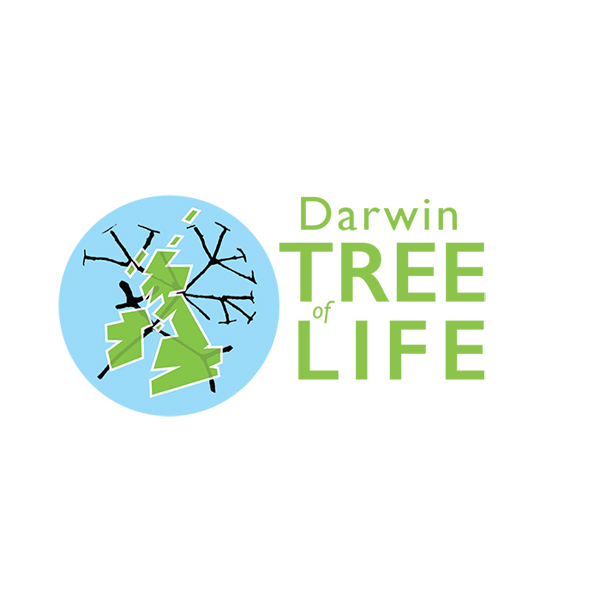
- 03 Aug 2025
In News:
The Darwin Tree of Life (DToL) project is nearing the completion of its first phase and represents one of the most ambitious scientific efforts to decode the diversity of life on Earth. Focused on sequencing the genomes of all eukaryotic species in Britain and Ireland, the project is a cornerstone of the global Earth BioGenome Project (EBP).
About the Project
- Objective: To generate high-quality genome sequences of around 70,000 eukaryotic species including animals, plants, fungi, and protists.
- Approach: Careful collection of representative samples, application of advanced DNA sequencing technologies, and use of computational tools to understand how genetic code drives biological diversity.
- Collaboration: A joint initiative involving ten biodiversity, genomics, and data analysis partners.
What are Eukaryotes?
- Definition: Organisms with complex cells that have a well-defined nucleus enclosed by a membrane, along with organelles such as mitochondria and Golgi apparatus.
- Examples: Protists, plants, fungi, and animals.
- Distinctive Features:
- Possess chromosomes inside the nucleus.
- Reproduce asexually (mitosis) or sexually (meiosis + gamete fusion).
- Contrast with Prokaryotes: Unlike bacteria and archaea, eukaryotes are structurally advanced due to compartmentalized cell functions.
The Earth BioGenome Project (EBP)
- Vision: A global initiative to sequence, catalogue, and analyse the genomes of all known eukaryotic species on Earth.
- Timeline: 10 years.
- Network: Collaborative effort involving scientists, institutions, and multiple regional projects like DToL.
Significance:
- Scientific Advancement
- Provides a genomic foundation for understanding biodiversity, evolution, and taxonomy.
- Helps uncover how genetic variations translate into ecological and physiological adaptations.
- Conservation and Sustainability
- Offers data vital for protecting endangered species and ecosystems.
- Assists in addressing biodiversity loss and supporting global conservation strategies.
- Applications in Human Development
- Medicine: Discovery of new genes for disease resistance or therapeutic innovations.
- Agriculture: Identification of traits for crop resilience and productivity.
- Biotechnology:Utilisation of unique biological pathways for industrial and environmental applications.
Human Outer Planet Exploration (HOPE)
- 03 Aug 2025
In News:
- India has taken a decisive step in advancing its space exploration ambitions with the launch of theHuman Outer Planet Exploration (HOPE) analogue station in Ladakh’s Tso Kar region.
- Developed by Bengaluru-based space science company Protoplanet in collaboration with the Indian Space Research Organisation (ISRO), the station is designed to simulate extra-terrestrial conditions, closely mimicking the geological and environmental features of the Moon and Mars.
What is HOPE?
- Analogue Station Concept: An analogue research station replicates planetary conditions to test technologies, study human adaptability, and conduct crew training. Globally, there are 33 such facilities, including BIOS-3 (Russia), HERA (USA), SHEE (Europe), and the Mars Desert Research Station (Utah, USA).
- Location & Conditions: Situated at an altitude of over 14,500 feet, Tso Kar offers a cold desert and high-altitude environment, chosen after nine years of study. Its extreme terrain makes it an “exceptional analogue site” for simulating extraterrestrial challenges.
- Mission Objective: HOPE aims to generate insights into human adaptability, resilience, and technology readinessfor sustained human presence beyond Earth.
Research and Operations
From August 1, 2025, selected crew members will undergo 10-day isolation missions inside the station. They will be subject to:
- Physiological studies – monitoring body adaptation in extreme conditions.
- Psychological studies – assessing mental resilience during confinement.
- Epigenetic research – studying biological changes in response to stress and environment.
Significance for India
- Strengthening Human Spaceflight Programme: This initiative provides critical data on crew adaptability for long-duration missions, supporting India’s vision of human exploration.
- Policy Alignment: The mission aligns with Prime Minister Narendra Modi’s announcement of establishing the BharatiyaAntariksh Station by 2035 and launching a manned Moon mission by 2040.
- Global Context: While NASA is targeting a manned mission to Mars by the 2030s, India is positioning itself as a rising player in deep-space exploration.
Strategic Importance
- Scientific Gains: HOPE will aid in technology validation, geological studies, life-detection research, and habitability assessments.
- International Standing: India joins the select group of countries operating analogue research stations, strengthening its credibility in interplanetary exploration.
- Capacity Building: The project helps build indigenous expertise in crew training, mission simulations, and psychological conditioning, paving the way for sustained space presence.
OECD Report on Plastic Pollution in Southeast & East Asia
- 03 Aug 2025
In News:
The Organisation for Economic Cooperation and Development (OECD) has warned that plastic use and waste in Southeast and East Asia could nearly double by 2050 unless countries adopt urgent and stringent policy measures. The findings are particularly significant as they coincide with the final round of UN negotiations on a global plastics treaty scheduled in August 2025 in Geneva.
Key Findings of the OECD Report
1. Surge in Plastic Use and Waste
- Plastic consumption in the ASEAN Plus Three (APT) region – which includes ASEAN-10 (Brunei, Cambodia, Indonesia, Laos, Malaysia, Myanmar, Philippines, Singapore, Thailand, Vietnam) plus China, Japan, and South Korea – is projected to rise from 152 million tonnes (2022) to 280 million tonnes (2050).
- Plastic waste will increase from 113 million tonnes (2022) to 242 million tonnes (2050).
- Packaging waste alone will almost double, from 49 million tonnes to 91 million tonnes.
2. Regional Disparities
- China will see the largest absolute rise, from 76 million tonnes (2022) to 160 million tonnes (2050).
- Lower-middle-income ASEAN nations such as Indonesia, Vietnam, and the Philippines will see the sharpest relative increase, with plastic waste nearly quadrupling from 7.5 million tonnes to 28 million tonnes.
3. Mismanaged Waste and Leakage
- Share of mismanaged plastic waste may fall (29% → 23% between 2022–2050), but total mismanaged waste will grow from 33 million tonnes to 56 million tonnes.
- The region is already the largest contributor to global plastic leakage – 8.4 million tonnes in 2022 (one-third of global leakage), projected to rise to 14.1 million tonnes by 2050.
- Plastic build-up:
- Freshwater systems: from 57 million tonnes (2022) → 126 million tonnes (2050).
- Oceans: from 17 million tonnes (2022) → 55 million tonnes (2050).
4. Climate Implications
- Greenhouse gas emissions from the plastic lifecycle (production + waste management) in the APT region are expected to nearly double from 0.6 GtCO?e (2022) to over 1 GtCO?e (2050).
Global High Stringency Scenario: Pathway to Solutions
OECD outlines a Global High Stringency (GHS) policy scenario that can reverse the trajectory:
- Plastic use: Could drop by 28% by 2050.
- Plastic waste: Could fall by 23%.
- Recycling: Average recycling rate could reach 54%, with secondary plastics meeting all future demand growth.
- Mismanaged waste: Could decline by 97%, drastically reducing environmental leakage.
Key recommended measures:
- Phase out single-use plastics.
- Strengthen waste collection systems and invest in recycling infrastructure.
- Promote circular economy approaches and regional cooperation.
Regional and Global Implications
- Cross-border challenge: Plastics persist for decades and move across boundaries. Poorer ASEAN nations like Indonesia often receive waste leakage from wealthier neighbours and China, with spillover impacts reaching the Indian Ocean and African coasts.
- Climate risks: Rising plastic demand intensifies emissions, undermining climate action goals.
- Global treaty negotiations: The report’s timing strengthens the case for an ambitious legally binding plastics treaty.
ICJ Ruling on the Kyoto Protocol
- 03 Aug 2025
In News:
In a landmark advisory opinion, the International Court of Justice (ICJ) has clarified that the Kyoto Protocol (1997) remains legally valid and binding, even after the Paris Agreement (2015) came into effect. This ruling has revived the Protocol’s legal relevance and has far-reaching implications for international climate law and global climate governance.
Background: The Kyoto Protocol
- Adopted: 1997; Entered into force: 2005 under the UN Framework Convention on Climate Change (UNFCCC).
- Nature: First binding international treaty mandating emission reductions by industrialised nations (Annex-I countries).
- Principle: Based on Common but Differentiated Responsibilities and Respective Capabilities (CBDR–RC), recognising that developed nations bear greater responsibility due to their historical emissions.
- Commitment Periods:
- First: 2008–2012
- Second: 2012–2020
- Obligations:
- Quantified emission reduction targets (from 1990 baseline).
- Provision of finance and technology transfer to developing nations.
- Market-based mechanisms such as the Clean Development Mechanism (CDM).
Why was Kyoto Considered Obsolete?
- US Non-Ratification: The largest historical emitter never joined the Protocol.
- Withdrawals: Countries like Canada and Japan later exited or refused binding targets.
- Rise of New Emitters: China overtook the US as the largest emitter by mid-2000s but, as a “developing country,” had no binding obligations.
- Shift to Paris Agreement (2015):
- Kyoto: Top-down, binding targets for developed countries.
- Paris: Bottom-up, voluntary Nationally Determined Contributions (NDCs) for all states.
- With no third commitment period defined after 2020, Kyoto was widely seen as defunct though never formally repealed.
ICJ’s Key Rulings
- Kyoto Still in Force: The absence of a new commitment period does not terminate the Protocol; it remains part of applicable international law.
- Legal Accountability: Non-compliance with emission reduction targets can constitute an “internationally wrongful act.”
- Retroactive Review: Past obligations (e.g., unfulfilled first commitment period targets) remain open for assessment.
- Advisory but Influential: Though not legally binding, the ruling strengthens grounds for climate litigation and accountability mechanisms.
Significance of the Ruling
- Legal Continuity: Confirms coexistence of Kyoto and Paris, rather than substitution.
- Revival of CBDR–RC: Re-emphasises differentiated responsibilities of developed nations, which Paris had diluted.
- Climate Justice: Opens the door for renewed scrutiny of historical emitters and their unfulfilled obligations.
- Litigation Pathways: Strengthens civil society and state efforts to seek compensation or stronger climate actions through international and domestic courts.
Implications for Global Climate Governance
- Developed countries face renewed legal and moral pressure to honour past commitments and extend finance and technology support.
- Developing nations gain a stronger footing to demand accountability for historical emissions.
- The ruling highlights the layered nature of international climate treaties, with Kyoto, UNFCCC, and Paris coexisting rather than replacing each other.
- It may reshape climate negotiations by reviving unfinished obligations under Kyoto while reinforcing Paris as the ongoing framework.
Piprahwa Relics
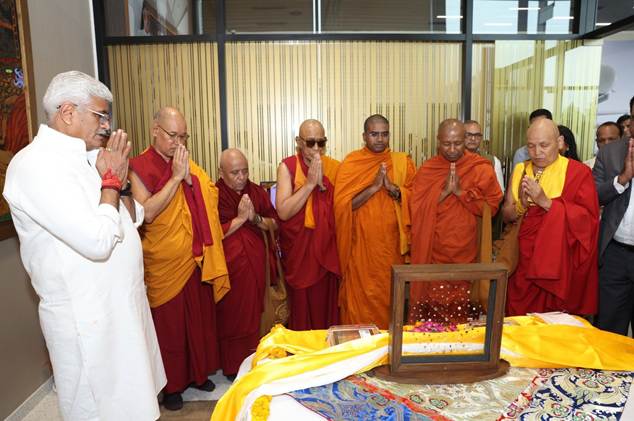
- 02 Aug 2025
In News:
The recent return of the sacred Piprahwa relics of Lord Buddha to India marks a landmark moment in India’s cultural diplomacy, heritage preservation, and spiritual history. Orchestrated by the Ministry of Culture in partnership with the Godrej Industries Group, this event prevented the relics’ auction in Hong Kong (May 2025) and instead restored them to their rightful home. For India, the land where the Buddha attained enlightenment and preached, this repatriation is more than a matter of archaeology—it reaffirms India’s role as the civilizational custodian of global heritage.
What are the Piprahwa Relics?
- Association: Believed to be the mortal remains of Lord Buddha, enshrined by the Sakya clan (his kinsmen) in the 3rd century BCE.
- Discovery: Excavated in 1898 by William Claxton Peppé, a British civil engineer and estate manager, from a stupa at Piprahwa, Uttar Pradesh, located just south of Lumbini (Buddha’s birthplace, now in Nepal).
- Contents:
- Bone fragments of the Buddha
- Caskets: soapstone, crystal, and sandstone coffer
- Offerings: gold ornaments, gemstones, and other ritual objects
- Inscription: A Brahmi script engraving on one of the caskets confirmed the relics’ identity, noting they were deposited by the Sakya clan.
Historical Journey of the Relics
- Colonial Appropriation (1898–1899)
- Following their discovery, the British Crown claimed the artefacts under the Indian Treasure Trove Act, 1878.
- The bone and ash relics were gifted to King Chulalongkorn of Siam (Thailand), reflecting colonial practices of cultural transfer.
- The majority of the remaining relics were placed in the Indian Museum, Kolkata (1899).
- Legal Protection
- Classified as ‘AA’ antiquities under Indian law, these relics cannot be sold, exported, or removed—underscoring their sacred and national significance.
- Attempted Auction in 2025
- The relics resurfaced in Hong Kong for an intended auction.
- Through timely diplomatic and legal intervention, supported by public-private partnership with the Godrej Group, the Ministry of Culture secured their return.
Significance of the Repatriation
1. Spiritual and Cultural Significance
- Buddhism, which spread from India across Asia, regards relics of the Buddha as sacred embodiments of peace, compassion, and enlightenment.
- The return reaffirms India as the spiritual homeland of Buddhism, strengthening cultural linkages with Buddhist-majority nations like Thailand, Myanmar, Japan, and Sri Lanka.
2. Archaeological and Historical Importance
- Piprahwa is one of the earliest archaeologically verified stupa sites.
- The discovery provides rare material evidence of Buddhist practices of relic veneration, confirming textual accounts in Buddhist scriptures.
3. Diplomatic and Soft Power Dimensions
- The move highlights cultural diplomacy as a tool of India’s foreign policy.
- India positions itself as a global guardian of Buddhist heritage, enhancing ties with Southeast Asian nations where Buddhism is deeply rooted.
4. Model of Public–Private Partnership
- The collaboration between the Government of India and the Godrej Industries Group sets a precedent for safeguarding heritage.
- It reflects how corporate social responsibility (CSR) can extend beyond business to civilizational legacy.
Supply and Use Tables 2020–21 & 2021–22
- 02 Aug 2025
In News:
Recently, the Ministry of Statistics and Programme Implementation (MoSPI) released the Supply and Use Tables (SUTs) for 2020–21 and 2021–22.
What are Supply and Use Tables?
SUTs consist of two interlinked matrices—Supply Tables and Use Tables, organized in a product-by-industry format.
- Supply Table: Captures total supply of goods and services, combining domestic production (at basic prices) and imports.
- Use Table: Reveals how these products are used across the economy—intermediate consumption, final consumption, capital formation, and exports (at purchasers’ prices).
Purpose & Significance of SUT
- Integration of GDP Approaches: SUT unifies production, income, and expenditure methods for GDP calculation, helping reconcile discrepancies between them.
- Robust Analytical Tool: Offers granular insights into product-industry dynamics, facilitating better policymaking and economic analysis.
- Data Reconciliation: Aligns macroeconomic estimates from sources like National Accounts Statistics (NAS), ASI, RBI, EXIM data, and census, improving coherence.
Data Coverage & Compilation Methodology
- Scope: Covers 140 products and 66 industries, at current prices, aligned with UN’s System of National Accounts (SNA).
- Key Steps:
- Identify industries (via NIC, NAS compilation categories) and products (via NPCMS for manufacturing, NPCSS for services).
- Compile Supply Table at basic prices; translate to purchasers’ prices using tax, margin, and CIF adjustments.
- Compile Use Table, detailing intermediate and final uses.
- Balance product supply and use to ensure consistency.
- Data Sources: NAS, ASI, EXIM, RBI, CBIC, MCA, Cost of Cultivation, etc.
Key Highlights
|
Metric |
2020–21 |
2021–22 |
|
Total Supply (Purchasers’ Prices) |
?407.52 lakh crore |
?523.08 lakh crore |
|
Sectoral Composition (basic prices) |
Agriculture: 11–13%, Mining: 2%, Manufacturing: 30–33%, Manufacturing-related services: 3%, Other Services: ~55% |
GVA-to-GVO Ratios (Efficiency Indicators)
- Top-performing industries (high ratios):
- 2020–21: Ownership of Dwellings, Fishing & Aquaculture, Forestry & Logging, Agriculture, Education & Research
- 2021–22: Ownership of Dwellings, Fishing & Aquaculture, Forestry & Logging, Agriculture, Crude Petroleum
- Low-performing industries (low ratios):
- 2020–21: Meat processing, Dairy, Grain mill & animal feeds, Communication equipment, Other manufacturing
- 2021–22: Similar, with Coke & Refined Petroleum added
Consumption Patterns
- Intermediate Consumption: Highest share by Construction—13.82% (2020–21), 14.03% (2021–22).
- Consumption Composition:
- 2020–21: Intermediate: Goods 70%, Services 30%; PFCE: Goods 62%, Services 38%
- 2021–22: Intermediate: Goods 72%, Services 28%; PFCE: Goods 59%, Services 41%
GDP Discrepancy Reconciliation
- 2020–21: Discrepancy of –?2,46,154 crores; reconciled by reducing PFCE by ?3,05,628 cr; Inventory by ?18,897 cr; Imports by ?78,374 cr.
- 2021–22: Discrepancy of –?2,16,579 crores; PFCE cut by ?3,55,540 cr; Inventory by ?1,884 cr; Imports by ?1,37,081 cr.
Significance
- Macro-Accounting Sophistication:SUT represents India’s advanced approach to reconciling diverse economic indicators—critical for accurate GDP estimation.
- Policy Insights:Understanding sectoral efficiencies (via GVA-to-GVO), product dependencies, and consumption structures can guide targeted reforms.
- Post-Pandemic Recovery Landscape:The sharp increase in total supply (28.4% growth) between 2020–21 and 2021–22 reflects economic resilience and rebound.
- Data-Driven Governance: SUT’s transparency and granularity strengthen evidence-based policymaking.
- Statistical Infrastructure Evolution: Proposals for SME/MNE disaggregation, real-time dashboards, and annual updates align India with OECD’s extended SUT models and global best practices.
8.8-magnitude earthquakenear Russia’s Kamchatka Peninsula
- 02 Aug 2025
In News:
- Recently, a magnitude 8.8 megathrust quake struck off the eastern coast of Kamchatka Peninsula, one of the largest ever recorded globally.
- This quake ranks among the six strongest recorded since modern seismology began—comparable to events in Ecuador (1906) and Chile (2010)—but caused remarkably limited damage.
- It originated in the Kuril–Kamchatka subduction zone, where the denser Pacific Plate thrusts beneath the North American/Okhotsk plates—a region known for frequent tectonic activity. The rupture extended over 200–300 miles underwater.
Tsunami: Warnings, Impact, and Aftermath
- The quake triggered tsunami alerts across the Pacific: Japan, the U.S. West Coast, Alaska, Hawai‘i, Chile, Ecuador (Galápagos), and French Polynesia, among others, issued multi-national warnings.
- In Kamchatka, waves between 3 to 5 meters struck, inundating the port and fish-processing plants in Severo-Kurilsk.
- Locally in Severo-Kurilsk, the quake caused serious structural damage to residential and social infrastructure, once again highlighting its vulnerability—especially recalling the catastrophic 1952 earthquake and tsunami that devastated the town.
Volcanic Aftermath: A Volcanic Chain Reaction
- In the quake’s wake, six volcanoes on Kamchatka became active. Most notably, Krasheninnikov erupted for the first time in 600 years, while others like KlyuchevskayaSopka, Shiveluch, Bezymianny, Karymsky, and Avachinsky also showed signs of eruption.
- This surge in volcanic activity—sparked by seismic fracturing of the crust—is considered a rare geological cascade, comparable to events last seen in 1737. Ash plumes reached up to 10 km height, posing aviation hazards.
Historical Perspective: Kamchatka’s Seismic Legacy
- 1952 Severo-Kurilsk Earthquake (Mag 8.8–9.0) caused a massive tsunami up to 18 meters, killing thousands and destroying the original town. It remains a defining tragedy in Russia’s seismic history.
- Earlier, the 1923 Kamchatka quake (Mag ~7–8) generated a tsunami that reached Hawaii and California’s coastlines, showing long-standing Pacific-wide impacts.
- These events underline the repeatable seismic vulnerability of the region and importance of preparedness.
India's Digital Payments Index
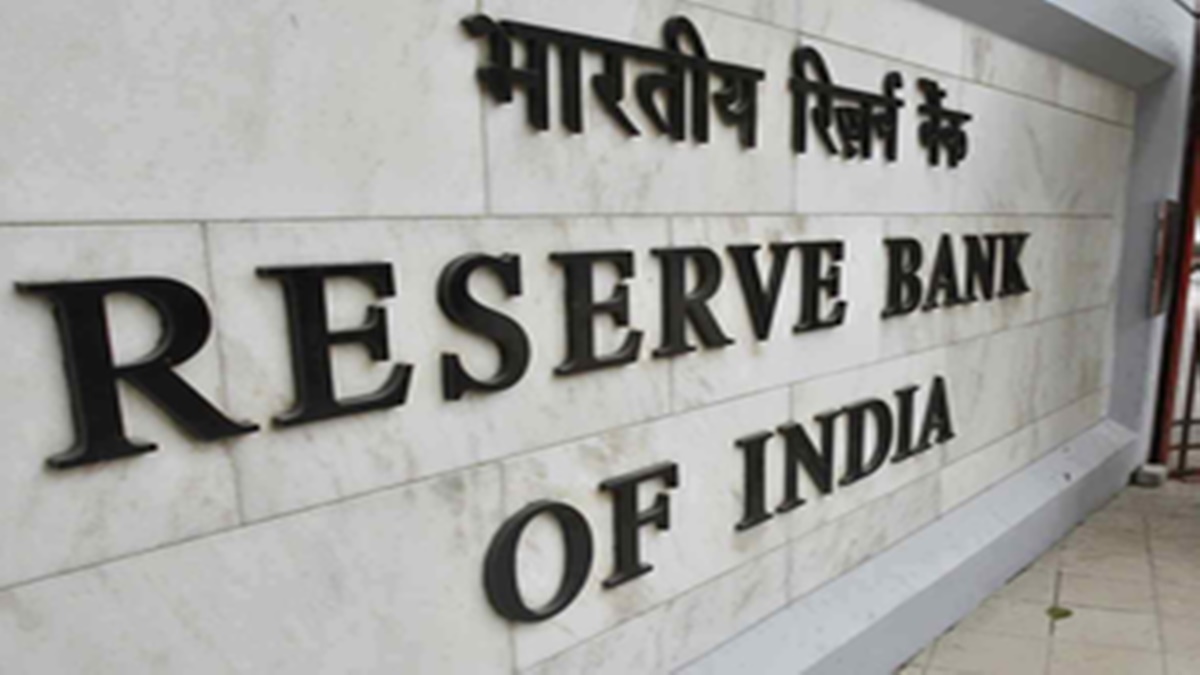
- 02 Aug 2025
In News:
The Reserve Bank of India’s Digital Payments Index (RBI-DPI), launched in January 2021, serves as a pivotal metric to gauge the country's journey toward a digital payments ecosystem. It uses March 2018 as its base year (index = 100) and is published every six months, offering a holistic and dynamic snapshot of digital transaction adoption.
RBI-DPI Calculation: Five Key Parameters
The DPI aggregates various dimensions of digital payments adoption across five weighted components:
|
Parameter |
Weightage |
Focus |
|
Payment Enablers |
25% |
Access infrastructure—mobile/internet penetration, Aadhaar, bank accounts, fintech regulations |
|
Demand-Side Infrastructure |
10% |
Consumer-facing tools—mobile/internet banking, debit/credit cards, FASTags |
|
Supply-Side Infrastructure |
15% |
Merchant tools—PoS terminals, ATMs, QR codes, bank branches, business correspondents |
|
Payment Performance |
45% |
Transaction metrics—volume/value of digital transfers, IMPS/NEFT/UPI usage, paper clearing |
|
Consumer Centricity |
5% |
User experience—awareness, complaint resolution, fraud handling, system uptime |
Drivers Behind the Mar 2025 Jump
As of March 2025, RBI-DPI stood at 493.22, up from 465.33 in September 2024—a year-on-year rise of 10.7%. The key drivers include:
- Supply-side Infrastructure Improvements: Wider merchant adoption of PoS, QR codes, and enhanced banking outreach.
- Payment Performance Surge: Rapid uptake of UPI, IMPS, and other platforms.
- Policy & Technology Boosters: Initiatives such as Digital India, increasing smartphone penetration, and fintech innovation have fueled demand.
Significance for Digital India
- Digital Economy Tracking: DPI is a quantitative barometer of India’s shift to a digital-first economy—enabling policymakers to monitor progress and identify gaps in access or infrastructure.
- Financial Inclusion & Transparency: Growth in DPI indicates deeper penetration of digital finance into rural and marginalized areas, helping combat cash reliance and promote inclusion.
- Policy Formulation & Monetary Insights: Metrics under Payment Performance bolster the RBI’s real-time understanding of transactional trends, aiding monetary policy and regulatory interventions.
- Enhancing Global Fintech Standing: A rising DPI strengthens India’s position as a global digital finance hub, enhancing credibility and attracting investment.
Challenges & Recommendations Ahead
- Digital Divide: Rural areas still lack adequate connectivity and awareness to fully utilize digital tools.
- Cybersecurity & Fraud: As transactions rise, so do risks. Issues like fraud, system downtime, and grievance redressal remain priorities.
- Tech Standardization: Ensuring interoperability and unified standards across platforms is essential.
Schengen Visa Cascade Regime
- 02 Aug 2025
In News:
Since 18 April 2024, the European Commission implemented a preferential “cascade” regime under the revised Schengen Visa Code (2020 reform), offering long-term, multiple-entry Schengen visas to Indian nationals with a clean travel history. Originally effective for India, Turkey, and Indonesia, this regime could expand to other countries based on diplomatic and readmission cooperation.
What Is the Schengen Area & Visa Basics
- The Schengen Area comprises 29 countries, including most EU members and four EFTA nations—allowing passport-free movement.
- A Schengen (short-stay) visa permits up to 90 days within any 180-day period. It is purpose-flexible (tourism, business, visiting family, etc.) but does not confer work rights.
The Cascade Regime – A Tiered System
Tier-Based Progression
The regime introduces a pyramid-like progression based on prior visa use:
|
Tier |
Requirement |
Visa Validity |
|
Entry-level |
First-time or minimal travel history |
Short-term, single-entry (probationary) |
|
Tier 1 |
Used three Schengen visas in the past 2 years |
1-year multiple-entry |
|
Tier 2 |
Held and lawfully used a 1-year multiple-entry visa in the past 2 years |
2-year multiple-entry |
|
Tier 3* |
Used a 2-year multiple-entry visa in the past 3 years |
5-year multiple-entry |
*Availability of the 5-year visa depends on passport validity.
Underlying Rule
Mexico’s 90/180 rule still applies: holders can stay only up to 90 days within any rolling 180-day period.
What's Special for Indian Nationals
- The cascade regime for Indians is more favorable than the general rule (which typically demands three prior visas within 2 years for progression). Indians now qualify for a 2-year visa with just two prior visas within 3 years, thanks to a special provision under Article 24(2c) of Regulation (EC) No 810/2009.
- The visa must not exceed passport validity—if the passport expires earlier, the visa has to be correspondingly shorter.
- The policy is discretionary—granting long-term visas (especially 5-year ones) depends on the visa officer’s judgement, even if eligibility criteria are technically met.
Strategic and Policy Significance
- People-to-people diplomacy: The cascade visa fosters cultural, business, and academic exchange, aligning with the EU's emphasis on soft power and deepening ties with India.
- Bilateral alignment: Reflects the EU-India Common Agenda on Migration and Mobility, and dovetails with negotiations around the India–EU Free Trade Agreement (FTA).
- Administrative efficiency: Long-term visas reduce repeat applications—beneficial for both visa applicants and consular resources.
- Reciprocity and expansion: Initially for India, Turkey, and Indonesia; the regime may expand to more countries based on cooperation levels.
SIMBEX-25
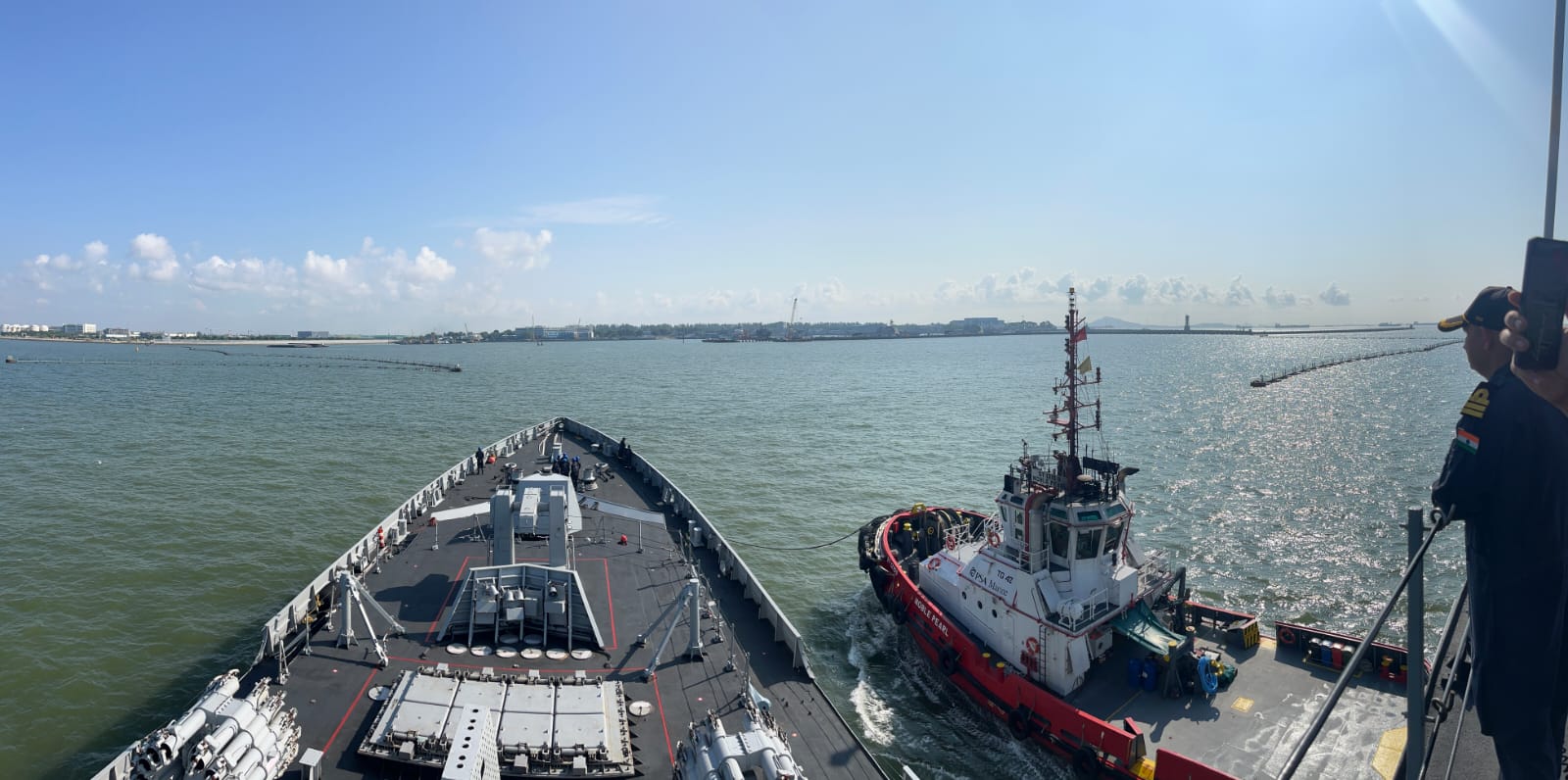
- 01 Aug 2025
In News:
- The 32nd edition of SIMBEX—India’s longest continuously conducted maritime bilateral exercise—was held from 28 July to 1 August 2025, hosted by Singapore. It included a Harbour Phase at Changi Naval Base and a Sea Phase in the southern South China Sea.
- Indian participation: INS Satpura, alongside INS Delhi, INS Kiltan, and the support vessel INS Shakti.
- Singapore Navy elements: RSN Vigilance and RSN Supreme, supported by MV Mentor and aerial units—S-70B Seahawk, Fokker-50 aircraft, and F-15SG fighters.
Objectives & Activities
Harbour Phase
- Featured Subject Matter Expert Exchanges (SMEEs), professional presentations, and strategic interactions.
- Conducted deck familiarisation visits aboard respective ships to foster doctrinal alignment
Sea Phase
- Encompassed advanced drill sequences, including:
- Air defence exercises, cross-deck helicopter operations
- Precision targeting, complex manoeuvres, and VBSS operations (Visit, Board, Search, and Seizure)
- Concluded with a ceremonial sail-past, symbolising professionalism and unity.
Geopolitical Landscape
- Strategic Reach: Deployment of Indian vessels to Philippines and Vietnam — alongside participation in SIMBEX—demonstrates India’s extended operational posture in Southeast Asia amidst regional tensions, notably with China’s maritime assertiveness.
- Broader Continuity: The Indian Navy, operating via the Andaman and Nicobar Command, employs SIMBEX as part of a broader matrix of maritime outreach in the region, including CORPAT and MILAN exercises
Sawalkote Hydroelectric Project
- 01 Aug 2025
In News:
In a strategic shift, India has floated international tenders for constructing the long-stalled Sawalkote Hydroelectric Project (1,856 MW) on the Chenab River in Jammu & Kashmir, leveraging the fact that the Indus Waters Treaty (IWT) with Pakistan is currently in abeyance. This development marks a significant turn in India’s water diplomacy and infrastructure planning.
Background & Project Details
- Location & Nature: Sawalkote is a run-of-river hydropower project near Sidhu village in Ramban district, J&K.
- Conception & Delay: Originally conceived in the 1980s, handed to NHPC in 1985, then returned to JKSPDC in 1997. Despite Rs 430 crore spent on enabling infrastructure, the project remained unstarted until a 2021 MoU revived it under an BOOT (Build-Own-Operate-Transfer) model.
- Tender Process: In July 2025, NHPC invited international bids (design, planning, engineering) with bid submissions due by September 10, 2025.
- Scale & Costs: Estimated cost stands at Rs 22,704.8 crore, set to be executed in two phases.
- Environmental Clearances: Forest Advisory Committee granted in-principle approval for diversion of 847 hectares of forest land.
Indus Waters Treaty (IWT) & Its Suspension
- Treaty Overview: Signed in 1960 (brokered by the World Bank), IWT allocates the eastern rivers (Ravi, Beas, Sutlej) to India, and the western rivers (Indus, Chenab, Jhelum) to Pakistan. India retains limited non-consumptive usage rights for hydro-power on these western rivers.
- First Suspension: On 23 April 2025, following a terrorist attack in Pahalgam, India suspended the IWT, citing national security and the treaty’s exploitation by Pakistan for cross-border terrorism.
- Consequences: India ceased hydrological data sharing, blocked Pakistani access to project visits, and released annual joint-status reporting—effectively halting treaty obligations.
- Strategic Intent: This pause grants India freedom to launch projects like Sawalkote without Pakistan’s prior objections or IWT constraints.
Geopolitical Tensions & Ramifications
- Long-term Impact on Pakistan: The Indus system sustains ~80% of Pakistan’s agriculture and electricity. Disruption could severely undermine food security, hydropower production, and urban water supply.
- Symbolism of a Rift: The treaty had survived wars and conflicts. Its suspension is viewed as an overt break in regional cooperative norms, with potential for conflict escalation.
- Legal & Diplomatic Fallout: Pakistan views reduced water flows as “act of war”; it is exploring legal avenues and appealing for treaty revival.
- India’s Firm Stance: PM Modi has labeled the treaty “unjust,” declared “blood and water cannot flow together,” further hardening India's negotiating posture.
Strategic Evaluation
- Violation or Tactical Move? While the IWT allows limited usage by India, its suspension indicates a focus on infrastructure autonomy over the western river system.
- Regional Domino Effects: With rising global water disputes, actions like this may set precedent in viewing water as geopolitical leverage.
- Environmental & Social Risks: Dam construction and forest diversion raise ecological concerns; plus, local displacement and compensation need careful handling.
Skill Impact Bond (SIB)

- 01 Aug 2025
In News:
- India is at the cusp of a demographic transition, with a young workforce expected to drive its goal of becoming a $30 trillion economy by 2047.
- Yet, only ~4% of India’s workforce is formally skilled, and nearly 30% of trained individuals remain unemployed. Traditional skilling schemes have struggled, especially with job retention.
- Against this backdrop, Skill Impact Bond (SIB), launched in 2021, marks a paradigm shift in India’s skilling ecosystem by linking financing to actual outcomes.
What is the Skill Impact Bond (SIB)?
- Launched: November 2021.
- Implementing Agency: National Skill Development Corporation (NSDC) under Ministry of Skill Development & Entrepreneurship.
- Partners: British Asian Trust, Children’s Investment Fund Foundation (CIFF), HSBC India, JSW Foundation, Dubai Cares.
- Target: Train 50,000 youth (60% women), ensure sustained employment.
It is India’s first development impact bond focused on employment, not just certification.
How Does SIB Work?
- Risk Investors (Private/Philanthropic): Provide upfront funds to service providers (training institutes).
- Service Providers: Deliver skill training, placement support, and post-placement mentoring.
- Outcome Funders (Govt/Donors): Repay investors if measurable outcomes are achieved (job placement + retention).
- Third-Party Evaluator: Verifies outcomes.
Key Distinction: Funding is tied to placement and retention, not mere enrolment/certification.
Progress So Far
- 23,700 youth trained across 13 sectors & 30 job roles.
- 72% women participation – one of the highest in any skilling programme.
- 75% placed in jobs, and 60% retained beyond 3 months, exceeding national averages (<10% under older schemes).
- Jharkhand, UP, Delhi are leading states in enrolment.
Significance
- Women-led Growth:
- 72% women trainees; many first-generation formal workers (tribal, rural, conservative households).
- Skilling gives women not just jobs but also agency, confidence, and identity.
- Outcome-Based Financing:
- Ensures accountability of training providers.
- Attracts private/philanthropic capital into public welfare.
- Addresses Retention Challenge:
- Traditional skilling: 84% complete training, but <10% stay in jobs beyond 3 months.
- SIB model pushes for long-term impact.
- Replicable Model:
- Can be scaled to health, education, social welfare.
- Example: Project AMBER (apprenticeship-based skilling) also uses this financing.
Challenges Ahead
- Scale vs Depth: Training 50,000 is significant, but India needs millions of skilled youth annually.
- Social Barriers: Women face mobility, safety, and cultural challenges in sustaining employment.
- Monitoring & Evaluation: Requires robust third-party systems to measure outcomes fairly.
- Private Participation: Sustaining investor confidence demands continuous success stories.
Way Forward
- Expand outcome-based financing to more sectors.
- Strengthen ecosystem for women (hostels, childcare, safe mobility).
- Continuous mentoring & alumni networks to ensure retention.
- Use digital platforms for scalable skilling and tracking.
Barbados Threadsnake (Tetracheilostoma carlae)

- 01 Aug 2025
In News:
The Barbados threadsnake, long considered lost to science, has made a startling comeback. This diminutive reptile—no longer than a coin—was rediscovered in Barbados in March 2025, nearly two decades after its last documented sighting. Its reappearance has reignited global interest in its conservation and the fragile ecosystems it inhabits.
Key Attributes & Taxonomy
- Scientific Classification: Tetracheilostoma carlae, family Leptotyphlopida.
- Size & Weight: Adults reach approximately 9–10 cm (3–4 in) in length and weigh ~0.6 g (~0.02 oz)—making it the world’s smallest known snake
- Physical Traits: Extremely slender—about as thick as a spaghetti noodle. Distinguished by pale orange dorsal stripes and a small scale on the snout
- Vision & Behavior: A blind, fossorial snake that burrows underground, especially hiding under rocks during the day.
- Diet: Feeds on termite and ant larvae—its petite jaws prevent it from consuming larger prey.
- Reproduction: Oviparous, laying only one large egg at a time, with hatchlings already about half the size of adults.
Rediscovery: A Significant Scientific Moment
- Context: The species had not been observed since 2006, and earlier specimens were often misidentified in museum collections.
- 2025 Rediscovery: During a March ecological survey in central Barbados by the Ministry of Environment and Re:wild, the snake was found under a rock near a jack-in-the-box tree. It was confirmed after microscopic and morphological assessment at the University of the West Indies.
- Reactions: This turn of events is hailed as a conservation triumph and a poignant reminder of Barbados’s biodiversity despite its heavily altered landscape.
Conservation Context & Implications
- Habitat Loss: Over 98% of Barbados’s primary forests have been cleared, leaving threadsnake habitats limited to a few square kilometers of secondary forests, particularly in the Scotland District.
- Threats: Loss of habitat and competition from the invasive Brahminy blind snake (Ramphotyphlops braminus), which reproduces asexually and may outcompete the threadsnake.
- Conservation Action: The rediscovery falls under the broader Conserving Barbados’ Endemic Reptiles (CBER) project. Future plans focus on mapping its range, safeguarding habitats, and preserving biodiversity as part of Barbados's compliance with the Kunming-Montreal Global Biodiversity Framework.
Dorjilung Hydropower Project
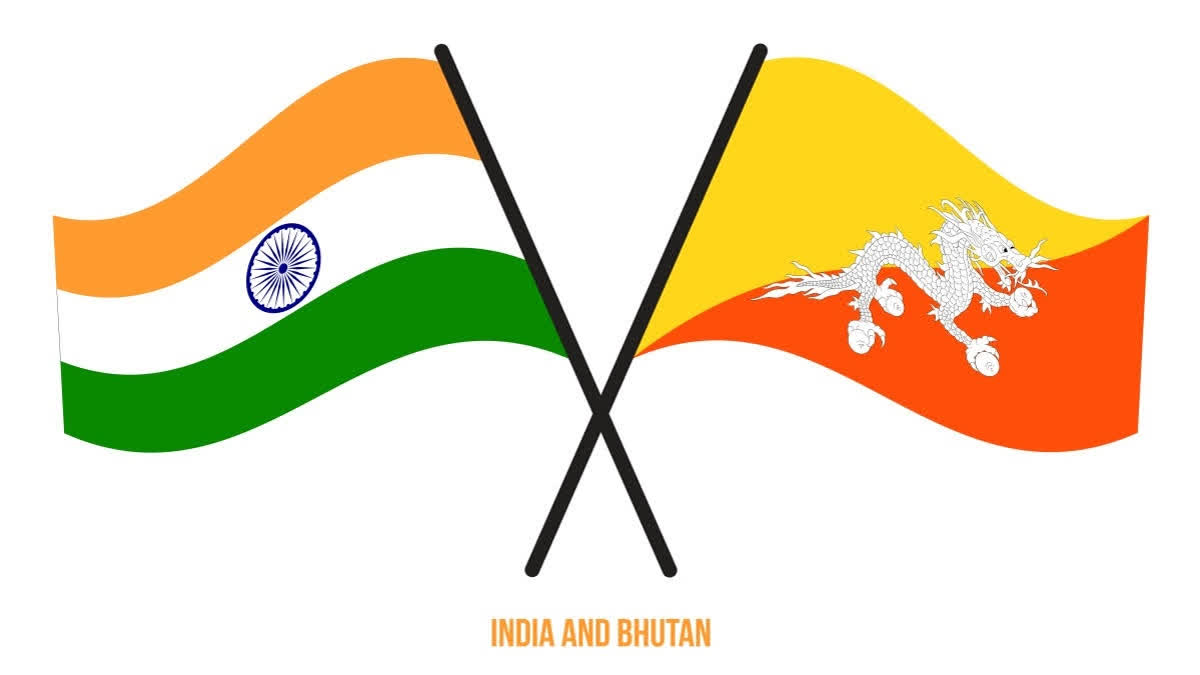
- 01 Aug 2025
In News:
India and Bhutan share one of the most successful models of hydropower cooperation in South Asia. The launch of the 1125 MW Dorjilung Hydropower Project in Bhutan, with Tata Power’s equity participation alongside Bhutan’s Druk Green Power Corporation (DGPC), marks a turning point in cross-border energy diplomacy. Unlike earlier projects dominated by Indian government financing, Dorjilung reflects a shift towards Public–Private Partnership (PPP), multilateral funding, and private sector involvement.
Key Features of the Project
- Type: Run-of-the-river scheme on the Kurichhu River (tributary of Drangmechhu, flows into India).
- Location: Mongar and Lhuentse districts, eastern Bhutan.
- Technical Specs:
- Dam height: ~139.5 m (concrete-gravity).
- Headrace tunnel: 15 km.
- Powerhouse: 6 Francis turbines.
- Annual generation: ~4.5 TWh.
- Cost: USD 1.7 billion (~?150 billion).
- Funding: World Bank.
- Equity Structure: DGPC (60%) + Tata Power (40%).
- Timeline: Commissioning expected by 2032.
India–Bhutan Energy Ties
- Existing Cooperation:
- Governed by the 2006 Bilateral Agreement on Hydropower Cooperation (protocol revised 2009).
- 4 operational projects supplying power to India: Chhukha (336 MW), Kurichhu (60 MW), Tala (1020 MW), Mangdechhu (720 MW).
- Punatsangchhu I (1200 MW) and Punatsangchhu II (1020 MW) under construction.
- Economic Importance for Bhutan:
- Hydropower exports = 40% of govt revenue and 25% of GDP.
- India buys surplus electricity, ensuring stable market access.
- India’s Strategic Interest:
- Ensures clean energy imports.
- Strengthens regional energy security.
- Counters Chinese presence in the Himalayan hydropower sector.
What Makes Dorjilung Different?
- PPP & Private Sector Role: First large-scale project with an Indian private company (Tata Power) holding major equity.
- Diversified Financing: World Bank funding reduces Bhutan’s dependence on Indian grants and credit lines.
- B2B Model: Moves from a government-to-government (G2G) model to business-to-business (B2B), granting Bhutan greater autonomy and bargaining parity.
- Integrated Renewable Plan: Tata Power–DGPC partnership envisions 5000 MW clean energy capacity, including:
- Dorjilung (1125 MW)
- Gongri (740 MW)
- Jeri Pumped Storage (1800 MW)
- Chamkharchhu IV (364 MW)
- Solar projects (500 MW).
Strategic & Geopolitical Significance
- For Bhutan:
- Reduces financial vulnerability by avoiding overdependence on Indian government aid.
- Attracts global institutions (World Bank), raising international credibility.
- Boosts local development in eastern districts (infrastructure, jobs).
- For India:
- Enhances energy security via long-term clean energy imports.
- Strengthens economic diplomacy with a trusted neighbour.
- Counters China’s Belt and Road Initiative (BRI) push in Himalayan hydropower (e.g., Nepal’s tilt towards Chinese funding).
- Supports Paris Agreement & renewable targets.
- For the Region:
- Creates scope for regional energy grids under BIMSTEC and BBIN (Bangladesh, Bhutan, India, Nepal).
- Encourages private-sector led cross-border energy trade.
Challenges Ahead
- Delayed Timelines: Past Bhutanese projects (e.g., Punatsangchhu I & II) suffered huge delays and cost overruns.
- Debt Burden: Large projects raise Bhutan’s external debt, though hydropower revenue offsets this risk.
- Environmental Concerns: Dam construction in fragile Himalayan ecosystems risks landslides, habitat loss, and displacement.
- Domestic Politics: Growing debate within Bhutan on overdependence on India; balancing autonomy with partnership is key.
- Regional Rivalries: India’s refusal to import power from Chinese-funded projects in Nepal shows how geopolitics can complicate energy trade.
Way Forward
- Diversify Financing: Blend of multilateral, private, and bilateral sources to reduce dependency risks.
- Strengthen Grid Connectivity: Expand India–Bhutan–Bangladesh power corridors.
- Sustainable Practices: Ensure climate-resilient dam design, environmental safeguards, and local community participation.
- Expand Solar–Hydro Synergy: Hybrid models (hydropower + solar) to ensure round-the-clock renewable supply.
- Institutional Mechanisms: Strengthen the India–Bhutan Joint Group on Hydropower Projects for dispute resolution and faster approvals.
First-Ever Grassland Bird Census in Kaziranga National Park
- 31 Jul 2025
In News:
The first dedicated Grassland Bird Census was conducted in Kaziranga National Park, Assam, marking a significant step in avian biodiversity monitoring in India. The initiative was widely acknowledged, including by Prime Minister Narendra Modi in his Mann Ki Baat broadcast, for its innovative use of Artificial Intelligence (AI) and acoustic monitoring.
Objective and Significance
- Purpose: To systematically monitor the population, breeding patterns, and habitat health of grassland-dwelling bird species, many of which are rare or threatened.
- Conservation Value: Grassland birds serve as ecological indicators of habitat quality, akin to how BMI reflects human health.
- Highlight Species:
- Documented 43 bird species
- Included 1 Critically Endangered, 2 Endangered, and 6 Vulnerable species (IUCN Red List)
- Notably, over 85 nests of the endangered Finn’s Weaver, endemic to the Brahmaputra floodplains, were discovered.
Methodology & Technological Innovations
- Conducted By: Joint effort of forest officials, Kaziranga National Park authorities, conservationists, and researchers including INSPIRE fellow Chiranjib Bora.
- Sites Covered: 185 grassland locations across the national park.
- Tools Used:
- Passive Acoustic Monitoring: Audio recorders placed atop trees to capture bird calls during the breeding season.
- AI Integration:
- BirdNET Software used to automatically identify bird species by analyzing vocalizations.
- Spectrograms enabled visual analysis of sound frequencies for accurate classification.
Key Innovations and Impact
- First of its Kind: India’s first census focused exclusively on grassland bird species, often overlooked in standard bird surveys.
- Non-Intrusive Monitoring: AI-powered audio analysis allowed species identification without disturbing natural behavior.
- Awareness & Biodiversity Education: The census is a powerful example of how technology and sensitivity can together enhance biodiversity understanding and conservation awareness.
Setubandha Scholar Scheme
- 31 Jul 2025
In News:
The Setubandha Scholar Scheme (also referred to as Setubandha Vidwan Yojana) is a pioneering national initiative launched by the Ministry of Education to integrate scholars from traditional gurukuls into India's mainstream research ecosystem—especially at premier institutions like IITs.
Key Highlights:
- Objective: To formally recognise traditional learning and connect Indian Knowledge Systems (IKS) with modern scientific disciplines.
- Implementing Agency: Indian Knowledge System (IKS) division under the Central Sanskrit University (CSU).
- Eligibility: Minimum 5 years of rigorous study in a recognised gurukul and proven expertise in Shastras or traditional knowledge. No formal academic degree is required.
- Age Limit: Maximum 32 years.
Fellowships & Research Grants:
|
Category |
Fellowship (per month) |
Annual Research Grant |
Equivalent Academic Level |
|
Category 1 |
?40,000 |
?1,00,000 |
Postgraduate (Master’s) |
|
Category 2 |
?65,000 |
?2,00,000 |
Doctoral (PhD) |
- Research Domains (18 Fields): Ayurveda, health sciences, mathematics, astronomy, physics, grammar, strategic studies, political theory, cognitive science, architecture, performing arts, and more.
- Notable traditional categories include Anvikshiki Vidya (philosophy), Ganit-Bhaut-Jyotish Vidya (mathematics, physics, astronomy), and Bhaishajya-Arogya Vidya (health sciences).
Policy Context: NEP 2020 and Beyond
The scheme is a direct outcome of reforms envisioned under the National Education Policy (NEP) 2020, which emphasizes integrating traditional Indian knowledge systems with modern education, promoting multidisciplinary learning, and creating a flexible, inclusive research environment.
NEP-Driven Initiatives Linked to Setubandha:
- Nipun Bharat: Improved foundational literacy and numeracy by Class 2.
- Vidya Pravesh & Balvatikas: Early childhood education integration.
- Bharatiya Bhasha Pustak Yojana: Democratizing Indian language access.
- National Digital Depository for IKS: Repository of classical knowledge.
- PM Shri Schools: Model schools aligned with NEP's vision.
- Academic Bank of Credits (ABC) and Multiple Entry-Exit options.
- Anusandhan NRF & PMRF 2.0: Boosting research funding and fellowships.
- Global Outreach: Foreign universities (e.g., Deakin, Wollongong) setting up campuses in India.
Wider Impact and Significance:
- Institutional Recognition: For the first time, gurukul-trained scholars can pursue advanced research alongside IIT peers.
- Inclusivity in Education: Enables non-formal scholars to access elite academic spaces.
- Global Relevance: As interest grows in Ayurveda, Yoga, Sanskrit linguistics, and indigenous governance, India is positioning itself as a global knowledge hub.
- Empowerment of Marginalised Groups: Over 7.12 lakh girls in Kasturba Gandhi Balika Vidyalayas, and hostel schemes for PVTGs reflect NEP’s inclusive approach.
CRIB Blood Group
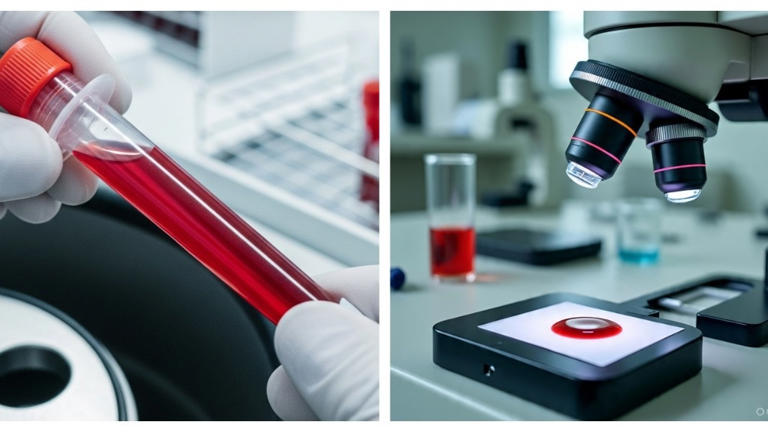
- 31 Jul 2025
In News:
- In a landmark discovery in transfusion science, researchers from India and the UK have identified a new and ultra-rare human blood group named CRIB, with the first case detected at the Rotary Bangalore TTK Blood Centre.
- The CRIB group adds to India’s growing contribution to rare blood immunogenetics and has been officially recognised by the International Society of Blood Transfusion (ISBT) and the International Blood Group Reference Laboratory (IBGRL), UK.
What is the CRIB Blood Group?
- CRIB stands for Cromer India Bengaluru and also symbolically refers to its importance in newborn and fetal medicine.
- It is a new antigen within the Cromer blood group system, which is linked to the Decay-Accelerating Factor (DAF) protein on red blood cells.
- CRIB belongs to the broader INRA (Indian Rare Antigen) blood group system, officially recognised in 2022 by the ISBT.
Discovery and Identification:
- Detected in a 38-year-old South Indian woman undergoing cardiac surgery in Kolar, Karnataka.
- Her blood was pan-reactive, reacting with all samples including O+ blood.
- No match was found even among 20 family members, leading to further analysis.
- After 10 months of genetic study at IBGRL, UK, a novel antigen was confirmed and designated as CRIB.
Scientific and Medical Significance:
- Rare Antigen Profile: Individuals with CRIB blood type lack a high-prevalence antigen, making compatible transfusions highly complex.
- Hemolytic Disease Risk: The CRIB antigen is especially relevant in Hemolytic Disease of the Fetus and Newborn (HDFN), where maternal antibodies attack fetal red blood cells.
- Global First: It is the first discovery of its kind globally, expanding the total number of known human blood group systems.
Implications for India and the World:
- Transfusion Protocols: Requires specialised matching and CRIB-negative donor identification, necessitating rare donor registries.
- Prenatal Care: Early screening could prevent complications in pregnancies involving blood group incompatibilities.
- Healthcare Infrastructure: Highlights the need for investment in genetic screening, rare blood banks, and pan-India awareness among healthcare professionals.
- Research Opportunities: Opens new areas of study in genomics, population diversity, and immune response in transfusions.
Next Steps:
- Development of CRIB-specific antibody panels and diagnostic tests.
- Integration into global and national blood group databases.
- Promotion of international collaboration in transfusion science and rare donor management systems.
Mera Gaon Mera Dharohar Programme

- 31 Jul 2025
In News:
The Mera Gaon Meri Dharohar (MGMD) initiative is a nationwide cultural mapping project launched by the Ministry of Culture on 27th July 2023 as part of the Azadi Ka Amrit Mahotsav. It operates under the National Mission on Cultural Mapping (NMCM) and is implemented by the Indira Gandhi National Centre for the Arts (IGNCA).
Key Highlights:
- Objective: To digitally document and preserve the intangible cultural heritage of all 6.5 lakh villages across India through a comprehensive virtual cultural portfolio.
- Current Status (as of 2025):
- Over 4.7 lakh villages have been culturally mapped.
- The data is accessible on the MGMD web portal.
- Thematic Categories: Each village is documented based on one or more of seven cultural themes:
- Arts and Crafts Villages
- Ecologically Oriented Villages
- Scholastic Villages (linked to texts and scriptural traditions)
- Epic Villages (associated with Ramayana, Mahabharata, Puranas, and oral epics)
- Historical Villages (linked to local or national history)
- Architectural Heritage Villages
- Other culturally significant villages (e.g., fishing, horticulture, pastoral communities)
Significance:
- Preservation of Heritage: Helps safeguard India’s diverse village-level traditions and practices.
- Cultural Inclusion: Recognizes lesser-known cultural narratives and identities.
- Rural Development: Encourages economic and artistic growth through cultural awareness.
- Digital Cultural Infrastructure: Enables access to cultural data via online platforms.
About National Mission on Cultural Mapping (NMCM)
Launched in 2017, the NMCM is a flagship initiative of the Ministry of Culture aimed at documenting and promoting India’s cultural diversity with a focus on grassroots-level heritage.
Key Components:
- Mera Gaon Meri Dharohar (MGMD) – Mapping of village-level cultural assets.
- Sanskritik Pratibha Khoj – Campaigns to discover artistic talent and promote folk and tribal arts.
- National Cultural Workplace (NCWP) – A digital platform and mobile app to create databases of artists, art forms, and cultural services.
This initiative strengthens India’s commitment to heritage conservation, digital documentation, and self-reliant cultural development, in line with Atmanirbhar Bharat.
Exercise Divya Drishti
- 31 Jul 2025
In News:
In July 2025, the Indian Army conducted Exercise Divya Drishti in East Sikkim, showcasing next-generation warfare technologies under high-altitude conditions.
Organised by the Trishakti Corps, the exercise focused on integrating Artificial Intelligence (AI) with battlefield surveillance and decision-making systems, in alignment with the Atmanirbhar Bharat initiative and the Army’s Decade of Transformation roadmap.
Key Features:
- AI-Enabled Battlefield Awareness: The Army deployed AI-integrated sensors capable of real-time surveillance, terrain mapping, and threat detection.
- Sensor-to-Shooter Linkage: Real-time data was transmitted from UAVs, drones, and ground-based sensors to command centres and firepower units, ensuring rapid response capability.
- UAV-Drone-Ground Synergy: Unmanned Aerial Vehicles (UAVs) and drones operated in coordination with ground platforms to simulate operational combat scenarios.
- Secured Communication Networks: Robust digital communication systems enabled seamless and secure data sharing across units.
- High-Altitude Readiness: The technologies were tested in the Himalayan terrain to assess their effectiveness in extreme operational environments.
Strategic Significance:
- Enhanced Situational Awareness: The exercise aimed to improve the Army’s capacity to observe, interpret, and act swiftly on the modern battlefield.
- Faster Decision-Making: AI integration minimizes command delays, improving response speed and operational precision.
- Indigenisation Drive: Demonstrates the Indian Army’s push for self-reliance in defence technology under Make in India.
- Future Warfare Doctrines: The insights will inform new operational strategies for multi-domain and hybrid warfare.
Operation Mahadev
- 30 Jul 2025
In News:
Indian security forces recently launched Operation Mahadev, a joint counter-terror operation near Srinagar, successfully neutralising three high-value terrorists, including Suleiman Shah, the mastermind behind the April 22 Pahalgam attack.
Key Facts about Operation Mahadev
|
Attribute |
Details |
|
Nature |
Precision anti-terror operation |
|
Launched By |
Indian Army (Para SF), CRPF, and J&K Police |
|
Command |
Strategically coordinated under the Chinar Corps |
|
Location |
Lidwas area, near Dara and Harwan, close to Dachigam National Park, Srinagar, Jammu & Kashmir |
Objectives and Outcomes
- Primary Aim: To neutralise Lashkar-e-Taiba-affiliated terrorists, specifically those involved in:
- Pahalgam attack (April 2024)
- Sonamarg Tunnel attack
- Notable Neutralised Terrorists:
- Suleiman Shah (main planner of Pahalgam attack)
- Two other Pakistan-trained terrorists, including a former Pakistani Army personnel
Strategic Significance
- Major blow to cross-border terrorism networks operating in Kashmir
- Reinforces India’s anti-terror posture, especially amidst the ongoing Operation Sindoor policy debate
- Enhances morale of security forces engaged in continuous counter-insurgency in the region
Paithani Sarees
- 30 Jul 2025
In News:
The Prime Minister recently highlighted the cultural and artisanal significance of Paithani sarees during the monthly ‘Mann Ki Baat’ radio programme, bringing national attention to this traditional Maharashtrian textile.
Historical Background
- Origin: Paithani sarees derive their name from Paithan, an ancient town on the banks of the Godavari River in Maharashtra.
- Antiquity: The tradition of Paithani weaving dates back over 2,000 years, with its roots in the Satavahana dynasty (2nd century BCE).
- Royal Patronage: These sarees were patronized by several royal courts, including the Satavahanas, Peshwas of Pune, Nizams of Hyderabad, and Mughal emperors.
Key Features
|
Attribute |
Description |
|
Material |
Woven using pure silk and gold/silver zari |
|
Technique |
Crafted using the tapestry weaving method, all handwoven |
|
Designs |
Intricate motifs like peacocks, parrots, lotuses, and floral vines |
|
Border & Pallu |
Known for distinctive kath (border) and padar (pallu) designs |
|
Size |
Typically six- or nine-yard sarees |
|
Cultural Significance |
Regarded as the ‘Mahavastra’ (great garment) of Maharashtra, traditionally worn by Maharashtrian brides |
Recognition and Cultural Value
- Symbol of Heritage: Paithani sarees are considered a symbol of Maharashtrian cultural identity and artisanal excellence.
- GI Tag: Granted the Geographical Indication (GI) tag in 2010, acknowledging their unique regional origin and craftsmanship.
- Artistic Value: Among the most exquisite and expensive sarees in India, valued for their aesthetic finesse and traditional techniques.
State of Food Security and Nutrition in the World (SOFI) 2025 Report
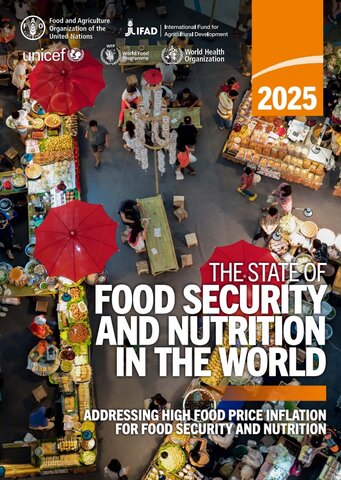
- 30 Jul 2025
In News:
Hunger affected up to 720 million people worldwide in 2024 — around 8.2 per cent of the global population, while 2.3 billion people in the world were estimated to have been moderately or severely food insecure, according to the ‘State of Food and Nutrition in the World’ (SOFI) 2025.
Key Highlights:
- Released by: Jointly published by FAO, IFAD, UNICEF, WFP, and WHO.
- Purpose:
- Annual global assessment to monitor progress on Sustainable Development Goal (SDG) 2:
- Target 2.1: End hunger and ensure access to safe, nutritious food.
- Target 2.2: End all forms of malnutrition.
Key Global Findings (2024 Data)
- Chronic Hunger:
- 720 million people (approx. 8.2% of global population) suffered from chronic hunger in 2024.
- Although lower than 8.5% (2023) and 8.7% (2022), it remains above pre-pandemic (2015) levels.
- 96 million more people are hungry now than in 2015.
- Food Insecurity:
- 2.3 billion people were moderately or severely food insecure in 2024.
- This is 335 million more than in 2019 (pre-COVID) and 683 million more than in 2015.
- Regional Distribution:
- Asia: 323 million undernourished (highest in absolute numbers).
- Africa: 307 million (highest prevalence, over 20% of population).
- Latin America & Caribbean: 34 million.
- Trends & Progress:
- Modest improvements in Southeast Asia, Southern Asia, and South America.
- Worsening hunger in parts of Africa and Western Asia due to conflict and climate stress.
Projections for 2030
- By 2030, 512 million people (6% of global population) may remain chronically undernourished.
- A decline of only 65 million since 2015, far short of the Zero Hunger target.
- 60% of these undernourished people are projected to be in Africa, with 17.6% prevalence.
India-Specific Insights
- Nutritional Affordability:
- 6% of Indians cannot afford a healthy diet despite food surplus.
- Urban areas show improvement due to post-pandemic income recovery.
- Rural areas face continued hardship due to PDS inefficiencies and price volatility.
- Child Malnutrition:
- High rates of stunting and wasting persist.
- Micronutrient deficiencies (hidden hunger) are common due to cereal-heavy diets lacking diversity.
- Policy Recommendations:
- Strengthen inclusion of millets, pulses, and fortified foods in public nutrition schemes.
- Address regional and demographic disparities through targeted interventions.
Major Drivers of Food Insecurity
- Post-COVID Aftermath: Reversed a decade of gains in global food security.
- Climate Events: Floods, droughts, and heatwaves have disrupted food systems.
- Conflicts & Wars: Ongoing wars (e.g. Ukraine) have triggered food price inflation and supply disruptions.
- Inflation:
- Since 2020, food price inflation has outpaced general inflation globally.
- Disproportionately affects low-income and vulnerable populations.
SOFI 2025: Recommendations
- Protect vulnerable populations via targeted fiscal support.
- Align macroeconomic policies to stabilize food markets.
- Invest in resilient agrifood systems and nutrition-sensitive agriculture.
- Strengthen food and nutrition data systems for informed policymaking.
- Promote dietary diversity and nutrition education.
SDG Context & Governance
- SDG 2 (Zero Hunger) is among the 17 UN Sustainable Development Goals adopted in 2015.
- These are non-binding, but serve as guiding principles for national policy and international cooperation.
- The SOFI report tracks progress annually against Targets 2.1 & 2.2.
- With only 5 years left to 2030, the current pace is inadequate for achieving global food and nutrition targets.
Gavri Festival
- 30 Jul 2025
In News:
Gavri is a unique 40-day ritualistic folk festival celebrated annually by the Bhil tribal community of the Mewar region in Rajasthan. It is a vibrant blend of dance, drama, music, and oral storytelling rooted deeply in the Bhil worldview, spirituality, and socio-cultural expression.
Key Features:
- Duration: 40 days, usually observed during the Hindu months of Shravana and Bhadrapada (July to September), coinciding with the monsoon and early harvest season.
- Form: A fusion of dance, drama (khel), mime, and dialogues.
- Theme: Enacts mythological battles between good and evil, primarily featuring Goddess Gauri/Amba and demons such as Bhasmasur or Bhiamwal, symbolizing the triumph of good.
- Performance Spaces: Villages where the performers' married sisters and daughters reside, reinforcing familial ties and social cohesion.
- Characters: All roles, including female ones, are portrayed by male performers, due to prevailing patriarchal norms.
- Narration: A storyteller called Kutkadiya introduces each scene, enhancing audience immersion.
- Costumes & Music: Colorful attire, energetic drumming, and folk instruments create a lively, theatrical atmosphere.
Cultural and Social Significance
- Spiritual Identity: The Bhil community considers themselves descendants of Lord Shiva and Goddess Parvati, viewing Parvati (Gauri) as their divine sister. Gavri is performed to honour her and ensure the well-being of their married women.
- Oral Heritage: The festival preserves centuries-old oral traditions, possibly dating back to the 3rd or 4th century CE, with references to the era of Siddhraj Jai Singh of Gujarat.
- Carnivalesque Spirit: Gavri subverts caste and class hierarchies through humor, parody, and satire. Authority figures, kings, and even gods may be lampooned in the plays.
- Resistance & Nature Worship: Performances like Badliya Hindwa and Bhilurana reflect themes of nature worship, tribal resistance to invaders (Mughals, British), and warnings against ecological destruction.
- Gender Fluidity: Though patriarchal in nature, the performance of female roles by men adds a layer of gender expression and cultural fluidity during the ritual.
Bhil Tribe: An Overview
- One of India's largest Adivasi groups, found mainly in Rajasthan, Gujarat, Madhya Pradesh, and Maharashtra.
- Speak the Bhili language and practice a syncretic faith combining animism with Hindu mythology.
- Their cultural identity is closely tied to forests, nature, and community-based rituals like Gavri.
Golden Jackal

- 30 Jul 2025
In News:
A recent citizen science study conducted by the Aranyakam Nature Foundation estimates that Kerala is home to approximately 20,000 to 30,000 golden jackals (Canis aureus naria), highlighting the species' wide distribution and adaptability across the state’s diverse landscapes.
Key Ecological Facts
- Scientific Name: Canis aureus
- Common Names: Golden Jackal, Common Jackal
- Physical Appearance: Medium-sized canid, smaller than a wolf and larger than a fox; coat ranges from golden to pale brown, varying seasonally.
- Behaviour: Primarily nocturnal in human-dominated areas; lives in monogamous pairs, often uses burrows or rock crevices for shelter.
- Diet: Omnivorous; consumes small mammals, birds, fish, insects, hares, fruits, and is known to scavenge near human settlements.
Habitat and Distribution
- Found in South, Southeast, and Central Asia, extending into Southeastern Europe and North-East Africa.
- In India, widespread from the Himalayan foothills to the Western Ghats, including Kerala, Maharashtra, Rajasthan, and Haryana.
- Preferred Habitats: Open lowland regions, especially below 200m elevation. In Kerala:
- Coconut groves (24%)
- Rural settlements (10%)
- Urban areas (5.6%)
- Rare in protected forest areas (only 2% of sightings)
Key Findings from Kerala Study
- Over 5,000 sightings were recorded across 874 villages, involving 2,200+ participants.
- High adaptability to human-modified landscapes such as peri-urban zones and coastal belts.
- Ecological Concerns:
- Rising cases of poultry predation
- Risk of rabies transmission
- Increasing dependence on organic waste, especially near coastlines
- Threat of hybridisation with stray dogs, posing genetic risks
Conservation Status
- IUCN Red List: Least Concern
- CITES: Appendix III
- Wildlife Protection Act, 1972 (India): Schedule I (highest protection under Indian law)
Veer Parivar Sahayata Yojana
- 29 Jul 2025
In News:
The National Legal Services Authority (NALSA), in a significant step toward safeguarding the legal rights of India’s uniformed forces, launched the Veer Parivar Sahayata Yojana during the North Zone Regional Conference in Srinagar. Themed “Reaffirming the Constitutional Vision of Justice for Defence Personnel and Tribals,” the event spotlighted the urgent need to institutionalize accessible legal assistance for military personnel and their families.
Rationale and Objectives
- Defence and paramilitary personnel frequently serve in remote, conflict-prone, or high-risk environments, which limits their ability to attend to civilian legal matters. Be it land disputes, family conflicts, service-related claims, or bureaucratic issues, legal hurdles can deeply affect their lives. The scheme acknowledges that a soldier stationed on the border cannot readily leave his post to handle legal proceedings back home.
- The Veer Parivar Sahayata Yojana is designed to bridge this critical gap by providing free, competent, and timely legal aid to serving personnel, veterans, and their families.
Key Features of the Scheme
- Joint Collaboration: The initiative is a joint effort between NALSA, the Kendriya Sainik Board (KSB), Rajya Sainik Boards (RSBs), and Zilla Sainik Boards (ZSBs) under the Department of Ex-Servicemen Welfare, Ministry of Defence.
- Legal Clinics Across Sainik Boards: Legal Services Clinics will be established at the district, state, and central levels of the Sainik Boards across India. These will function as the first point of contact for defence families seeking legal assistance.
- Trained Legal Volunteers: The initiative actively involves panel lawyers and trained paralegal volunteers, including ex-servicemen and defence family members, to offer legal services and counselling.
- Back-end Legal Infrastructure: A robust administrative mechanism will support the on-ground functioning of clinics and ensure prompt resolution of legal grievances.
- Coverage for Paramilitary Forces: The scheme will also extend support to paramilitary personnel from forces such as BSF, CRPF, ITBP, and others, who operate under similar hardships and isolation.
Significance and Constitutional Context
- The scheme upholds Article 39A of the Constitution, which mandates equal justice and free legal aid for all citizens. Defence personnel, who make immense sacrifices for national security, often remain underserved when it comes to civilian entitlements, rights, and dispute resolution.
- By reaffirming the constitutional commitment to access to justice, the scheme aligns with the broader goal of legal empowerment of vulnerable and marginalized communities, including those in service of the nation.
Deep Brain Stimulation (DBS)
- 29 Jul 2025
In News:
Over 1.6 lakh individuals globally have benefited from Deep Brain Stimulation (DBS)—a cutting-edge neurological procedure designed to manage complex brain disorders.
What is Deep Brain Stimulation?
DBS is a neurosurgical intervention wherein electrodes are surgically implanted into precise regions of the brain. These electrodes are connected via insulated wires to a pulse generator (similar to a pacemaker), typically placed under the skin near the collarbone.
The device delivers regulated electrical signals to targeted brain circuits. This helps modulate abnormal neural activity or restore disrupted brain function caused by neurological or psychiatric conditions.
How Does It Work?
- The implanted system sends mild, continuous electrical pulses to specific brain areas.
- These pulses help in stabilizing erratic electrical signals, which are often responsible for motor and cognitive dysfunctions.
- The stimulation does not destroy brain tissue and can be adjusted or turned off, offering reversibility unlike traditional ablative surgeries.
Clinical Applications of DBS
DBS has been widely adopted for treating movement disorders, especially when medications become ineffective:
- Parkinson’s Disease
- Essential Tremor
- Dystonia
Beyond motor disorders, DBS has received regulatory approval for use in certain psychiatric illnesses, such as: Obsessive-Compulsive Disorder (OCD)
Research is ongoing to explore its efficacy in conditions like:
- Severe Depression
- Epilepsy
Benefits of DBS
- Reversible and adjustable intervention
- Helps reduce motor symptoms such as tremors, stiffness, and rigidity
- Aims to normalize brain circuit functions at both micro (cellular) and macro (network) levels
- Offers hope in cases resistant to standard pharmacological therapies
Internal Complaints Committees
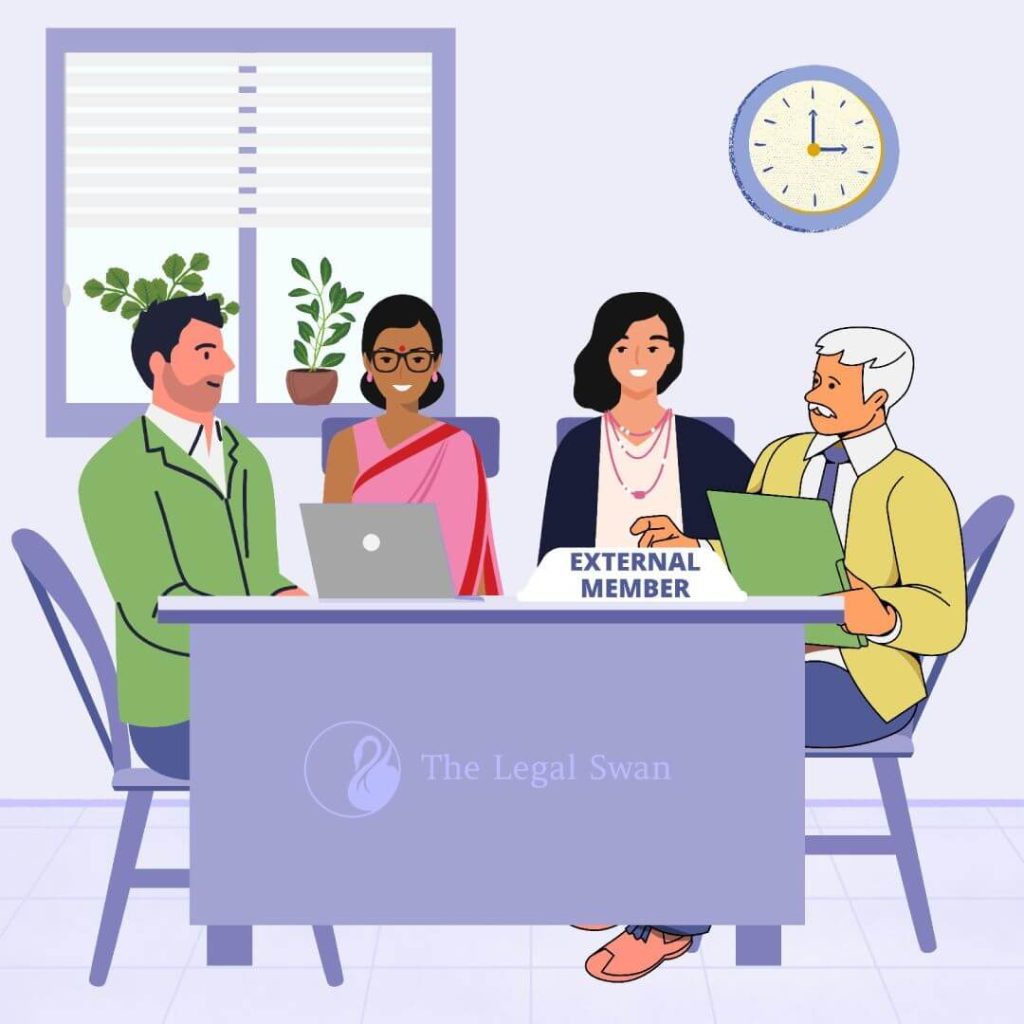
- 29 Jul 2025
In News:
The tragic case of a student’s self-immolation in Balasore, Odisha, in 2025, has brought renewed focus on the functioning of Internal Complaints Committees (ICCs) in India. The student, alleging sexual harassment by her Head of Department, had approached the college ICC, but her complaint was dismissed. Her family has alleged that the ICC was inadequately trained and biased in favor of the accused, exposing systemic flaws in India’s redressal mechanisms for workplace harassment.
This incident is a stark reminder that even a decade after the enactment of the Sexual Harassment of Women at Workplace (Prevention, Prohibition and Redressal) Act, 2013—popularly known as the POSH Act—the law’s implementation remains inconsistent and often ineffective.
Evolution of ICCs and the Legal Framework
1. Vishaka Guidelines (1997)
The foundation for workplace sexual harassment law in India was laid by the Supreme Court’s judgment in the Vishaka vs. State of Rajasthan (1997). The case stemmed from the gang-rape of Bhanwari Devi, a social worker who attempted to prevent a child marriage. The judgment led to the formulation of the Vishaka Guidelines, which:
- Defined sexual harassment at the workplace.
- Mandated Complaints Committees in institutions.
- Required these committees to be headed by a woman, have at least 50% female members, and include an external member to prevent internal bias.
However, these were non-binding guidelines and lacked statutory force.
2. POSH Act, 2013
The 2012 Nirbhaya gang-rape case spurred public demand for stronger gender-based protections, resulting in the enactment of the POSH Act, which gave legal backing to the Vishaka Guidelines. Key provisions of the POSH Act include:
- Mandatory establishment of Internal Complaints Committees (ICCs) at all workplaces with more than 10 employees.
- Creation of Local Complaints Committees (LCCs) at the district level to cover unorganized or small enterprises.
- ICCs are empowered to inquire, recommend disciplinary action, and facilitate criminal reporting when needed.
Structure and Powers of ICCs
Each ICC must have the following composition:
- Presiding Officer: A senior female employee.
- Two internal members: Preferably with legal knowledge or experience in social work.
- One external member: From an NGO or association committed to women's rights.
- At least 50% women members.
Functions and Powers:
- Can attempt conciliation if requested by the complainant.
- If not, must conduct an inquiry within 90 days.
- Can summon individuals and documents, with powers equivalent to a civil court.
- Can recommend disciplinary action to the employer if allegations are proven.
- The employer must assist the victim in pursuing a criminal complaint if desired.
- All proceedings and identities must be kept confidential.
Challenges in Implementation
Despite a clear legal mandate, the real-world functioning of ICCs has been fraught with systemic issues:
1. Poor Coverage
- Many institutions, especially in the private and informal sectors, have not constituted ICCs.
- Local Committees, intended to help informal workers, are either underreported or ineffective.
2. Inadequate Training and Bias
- ICC members often lack legal training or understanding of trauma-sensitive inquiry.
- As seen in the Balasore case, committees may favor senior male colleagues, reinforcing institutional power hierarchies.
- The absence of external accountability leads to compromised decisions.
3. Lack of Monitoring and Enforcement
- The Ministry of Women and Child Development is the nodal agency for the Act.
- But enforcement responsibility often lies with Labour and Industry Ministries, leading to fragmented oversight.
- The Supreme Court, in a 2024 review, described enforcement as “disquieting”, with serious lapses and poor record-keeping.
4. Breaches of Confidentiality
- There have been reports of identities being leaked, and complainants being stigmatized or retaliated against, violating the core principles of the Act.
Strengthening the POSH Mechanism
To ensure that the POSH Act fulfills its mandate, the following steps are critical:
- Universal Coverage and Registration:
- Mandate public disclosure of ICCs in all eligible institutions.
- Strengthen district monitoring mechanisms for both ICCs and LCCs.
- Capacity Building: Introduce mandatory training for ICC members on legal procedures, gender sensitivity, and trauma-informed handling.
- Robust Monitoring Framework:
- Enable centralized reporting portals for annual compliance.
- Conduct audits and periodic evaluations of ICC functioning.
- Accountability and Penalties:
- Impose penalties on employers for non-compliance or retaliatory action.
- Encourage whistleblower protections for witnesses and complainants.
- Public Awareness Campaigns: Inform women—especially in informal sectors—about their rights and the complaint mechanisms available to them.
Foot and Mouth Disease (FMD)
- 29 Jul 2025
In News:
- In July 2025, a concerning outbreak of Foot and Mouth Disease (FMD) led to the death of 16 spotted deer (chitals) at the Rajiv Gandhi Zoological Park in Pune, Maharashtra.
About Foot and Mouth Disease (FMD)
Nature of the Disease
- Foot and Mouth Disease (FMD) is a highly contagious viral infection caused by the aphthovirus from the Picornaviridae family.
- It affects cloven-hoofed animals, including cattle, buffaloes, goats, pigs, sheep, deer, and camelids.
- FMD is not zoonotic, i.e., it does not affect humans, and it poses no food safety risk.
Global and National Status
- FMD is classified as a Transboundary Animal Disease (TAD).
- It remains endemic in over 77% of the world’s livestock populations, particularly across Asia, Africa, and the Middle East.
- It severely disrupts livestock productivity, animal trade, and rural livelihoods.
Transmission and Symptoms
Transmission Routes
- Direct contact with infected animals.
- Indirect transmission through contaminated feed, equipment, vehicles, human movement, and airborne particles.
- Incubation period: 2–14 days.
- The virus can enter via inhalation, ingestion, or skin wounds.
Clinical Symptoms
- High fever lasting 2–3 days.
- Blisters and ulcers on the tongue, lips, hooves, teats, and mouth.
- Excessive salivation, lameness, and depression.
- Significant drop in milk production, weight loss, and growth retardation.
- In young animals, the disease can cause high mortality, while adults may suffer debilitating effects, affecting long-term productivity.
Strains and Immunity
- There are seven known strains of the FMD virus: A, O, C, SAT1, SAT2, SAT3, and Asia1.
- Immunity to one strain does not protect against others, making strain-specific vaccination critical.
Diagnosis and Institutional Infrastructure
- Confirmatory diagnosis is conducted through laboratory testing at premier institutes such as:
- ICAR-National Institute on Foot and Mouth Disease (NIFMD), Bhubaneswar
- Indian Veterinary Research Institute (IVRI), Bareilly
- National Institute of High Security Animal Diseases (NIHSAD), Bhopal
Government Interventions and Policies
National Animal Disease Control Programme (NADCP)
- Launched in 2019, the 100% centrally funded programme targets eradication of FMD and Brucellosis by 2030.
- Key components include:
- Mass vaccination
- Ear-tagging for traceability
- Cold chain infrastructure
- Disease surveillance and reporting
- Farmer awareness and community participation
Integrated Disease Management
- NADCP is aligned with the Livestock Health and Disease Control Programme (LHDCP).
- Several institutions like NIVEDI Bengaluru and Regional Disease Investigation Laboratories contribute to monitoring and outbreak control.
Preventive Strategies and Recommendations
To strengthen India's preparedness against FMD and other epizootics, the following measures are vital:
- Expand FMD Vaccination Coverage: Include zoo animals, wildlife reserves, and peri-urban livestock in regular vaccination drives.
- Strengthen Veterinary Surveillance: Ensure round-the-year disease surveillance, especially during weather extremes (monsoon and summer).
- Upgrade Infrastructure
- Expand testing capacity at regional levels.
- Deploy mobile diagnostic labs in remote zones.
- Raise Awareness: Educate livestock owners, zoo staff, and veterinary professionals about early symptoms, hygiene practices, and reporting protocols.
- Develop Strain-Specific Vaccines: Increase funding for R&D in strain identification and rapid-response vaccines.
- Leverage Technology: Use AI, GIS mapping, and data analytics to predict outbreaks and monitor disease spread.
Glacial Lake Outburst Floods (GLOFs)
- 29 Jul 2025
In News:
- In recent years, Glacial Lake Outburst Floods (GLOFs) have emerged as a critical concern in the Himalayan region, particularly affecting countries like India, Nepal, Bhutan, and China.
- The July 8, 2025, GLOF in Nepal—which washed away a China-built bridge and crippled hydropower plants supplying 8% of Nepal’s electricity—has drawn urgent attention to the increasing frequency and severity of such events.
- For India, especially in the Indian Himalayan Region (IHR), GLOFs pose an escalating risk to lives, infrastructure, and ecological systems due to climate change and unregulated development.
What is a Glacial Lake Outburst Flood (GLOF)?
A GLOF is the sudden, catastrophic release of water from a glacial lake—typically dammed by ice or moraine (glacial debris). The floodwaters often cause massive downstream destruction, marked by:
- Extremely high discharge volumes
- Destructive debris flows
- Short warning times
Types of Glacial Lakes in the Himalayas
- Supraglacial Lakes: Form on the surface of glaciers due to meltwater accumulation. Highly unstable during summer.
- Example: Cirenma Co in Tibet (1981), July 2024 Nepal GLOF.
- Moraine-Dammed Lakes: Form at glacier snouts, blocked by weak debris. Most vulnerable to outbursts.
- Example: South Lhonak (Sikkim), Tsho Rolpa (Nepal), Shako Cho (Sikkim)
Causes of GLOFs
Natural Triggers
- Glacial Retreat: Rising temperatures accelerate glacial melt, enlarging lakes.
- Ice or Rock Avalanches: Sudden falls into lakes displace water and rupture dams.
- Cloudbursts & Heavy Rainfall: Rapid rise in water levels increases pressure on dams.
- Seismic Activity: Earthquakes can destabilize moraine dams.
- Internal Piping: Seepage within dams weakens structural integrity over time.
Anthropogenic Factors
- Climate Change: Human-induced warming accelerates glacial melt.
- Unregulated Development: Construction near glacial zones—e.g., hydropower—exacerbates risk.
- Example: Teesta-III dam destruction in 2023.
Impacts of GLOFs
On Human Life and Infrastructure
- Casualties: Kedarnath (2013) and Sikkim (2023) GLOFs caused hundreds of deaths.
- Hydropower & Transport Damage: Washed-out roads, bridges, and dams; loss of electricity and connectivity.
- Displacement & Livelihood Loss: Long-term socio-economic disruption in affected regions.
On Environment
- River Course Changes & Silting: Raised riverbeds and reduced flood-carrying capacity.
- Teesta river rose several meters post-2023 flood.
- Habitat Loss & Biodiversity Decline: Ecological imbalance in alpine and riparian zones.
- Long-Term Ecosystem Stress: Sedimentation affects water quality and ecosystem resilience.
The Situation in India
India’s Himalayan arc—covering J&K, Ladakh, Himachal Pradesh, Uttarakhand, Sikkim, and Arunachal Pradesh—houses:
- 28,000 glacial lakes
- 7,500 lakes above 4,500 m altitude
- 11 major river basins
Yet, the region lacks sufficient monitoring infrastructure and early warning systems, primarily due to remoteness and hostile terrain.
Notable GLOF events:
- Kedarnath (2013): Triggered by cloudburst and glacial melt.
- South Lhonak (2023): Avalanche-triggered breach, damaging a $2 billion hydro project.
India’s Institutional Response to GLOF Risks
1. National Disaster Management Authority (NDMA) Initiatives
India has transitioned from reactive relief to proactive risk mitigation, through:
- National GLOF Programme: A ?150 crore initiative targeting 195 high-risk lakes.
- Committee on Disaster Risk Reduction (CoDRR): Coordinates central and state agencies, scientific institutions, and communities.
2. Five-Pronged Strategy
- Hazard Assessment: Classification of lakes by size, dam type, and downstream threat.
- Automated Weather & Water Stations (AWWS): Real-time monitoring (e.g., in Sikkim).
- Early Warning Systems (EWS): ITBP-led manual alerts; multilingual digital alerts in pilot stages.
- Engineering Interventions:
- Bathymetry and ERT scans
- Artificial channels and retention structures
- Community Engagement:
- Sensitization on religious and ecological concerns.
- Involving locals in scientific expeditions for credibility and access.
Technological Interventions
- SAR Interferometry: Satellite-based technique to detect micro-slope changes.
- Electrical Resistivity Tomography (ERT): Detects ice-cores under moraine dams.
- Unmanned Aerial Vehicles (UAVs): High-resolution terrain mapping.
- Remote Sensing: Tracks surface area growth of glacial lakes (but is post-facto).
Status of Mitigation Efforts
- Expeditions to 40 high-risk lakes in 2024 across J&K, Ladakh, HP, UK, Sikkim, and Arunachal Pradesh yielded positive outcomes.
- Installation of AWWS at lakes in Sikkim providing 10-minute interval data and daily lake imagery.
- ITBP trained for early alerts in absence of automated systems.
- More stations and expeditions are planned post-monsoon 2025.
Transboundary Challenges
- Many GLOF-prone lakes lie in Tibet, with rivers flowing into Nepal, Bhutan, and India.
- Nepal has faced multiple transboundary GLOFs recently (2024–25), with little to no warning from China.
- Example: July 8, 2025 GLOF from Tibet triggered floods in Nepal, destroying infrastructure.
- Past major GLOFs: Cirenma Co (1981), Dig Tsho (1985), Tama Pokhari (1998).
Policy Recommendations
- Strengthen Early Warning Systems: Expand AWWS and EWS coverage, integrate with mobile alerts.
- Transboundary Collaboration: Create shared protocols for upstream monitoring and data exchange with China, Nepal, and Bhutan.
- Integrate Climate Adaptation in Planning: Include GLOF risk in disaster risk reduction and infrastructure resilience planning.
- Ban Critical Infrastructure: Avoid siting major installations near vulnerable glacial zones.
- Promote Indigenous Technology: Invest in SAR, ERT, and AI-based modelling to predict GLOF risks.
- Community-Led Risk Reduction: Involve local populations in monitoring, response planning, and implementation.
Exercise Bold Kurukshetra 2025

- 28 Jul 2025
In News:
The 14th edition of Exercise Bold Kurukshetra was commenced in Jodhpur, Rajasthan, reinforcing India–Singapore military ties. This bilateral military exercise is a key component of both countries’ growing defence cooperation.
About Exercise Bold Kurukshetra:
|
Feature |
Description |
|
Type |
Bilateral joint military exercise |
|
First Initiated |
2005 |
|
Edition |
14th edition (2025) |
|
Location (2025) |
Jodhpur, Rajasthan |
|
Duration |
28 July – 4 August 2025 |
|
Format |
Tabletop Exercise and Computer-Based Wargame |
|
Objective |
Enhance interoperability, validate mechanised warfare tactics, and simulate UN peacekeeping operations |
Participating Contingents:
|
Country |
Unit/Regiment |
|
India |
Mechanised Infantry Regiment |
|
Singapore |
42nd Armoured Regiment, 4th Singapore Armoured Brigade |
Key Features:
- Mechanised Warfare Focus: Validates joint operational tactics in modern armoured and mechanised operations.
- UN Mandate Simulation: Exercises conducted under simulated Chapter VII of the UN Charter, preparing both armies for peacekeeping and peace enforcement missions.
- Ceremonial Traditions: Enhances military camaraderie through shared symbolism and operational command handovers.
- Equipment Display: The exercise concludes with a display of Indian Army equipment, highlighting India's indigenous defence capabilities.
Strategic Significance:
|
Domain |
Contribution |
|
Defence Diplomacy |
Deepens bilateral military cooperation with Singapore |
|
Indo-Pacific Stability |
Enhances India’s strategic role in maintaining peace in the Indo-Pacific |
|
UN Peacekeeping |
Builds joint operational readiness for multinational UN-mandated missions |
|
Capacity Building |
Boosts joint planning and execution skills for mechanised combat environments |
Sohrai Art of Jharkhand
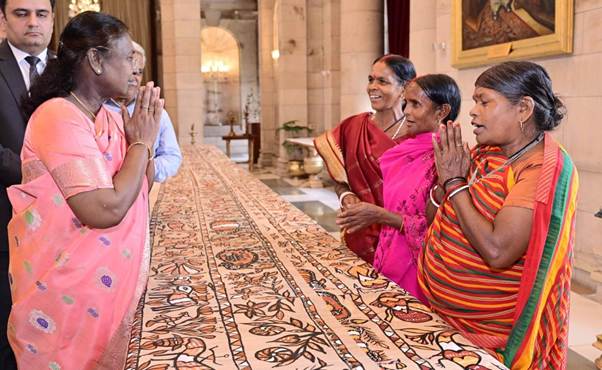
- 28 Jul 2025
In News:
Sohrai Art from Jharkhand was prominently showcased during Kala Utsav 2025 held at Rashtrapati Bhavan, where President Droupadi Murmu hailed it as reflecting the “soul of India.” The event marked a significant national recognition for this traditional tribal art.
About Sohrai Art:
|
Aspect |
Details |
|
Tribal Origins |
Practised by Santhal, Munda, and Oraon tribes in Jharkhand. |
|
Region |
Predominantly in Hazaribagh, Santhal Parganas, and parts of eastern Bihar. |
|
Occasion |
Ritual wall-painting during Diwali and harvest festivals. |
|
Purpose |
Thanksgiving for livestock and land fertility; linked to agrarian rituals and spiritual ecology. |
|
Artists |
Traditionally women; passed down through generations orally and practically. |
Key Features of Sohrai Art:
- Motifs: Stylized animals, birds, trees, and rural life, symbolizing harmony with nature.
- Materials: Uses natural pigments such as red ochre, white kaolin, yellow clay, and black manganese.
- Tools: Made with bamboo twigs, chewed sticks, and cloth instead of synthetic brushes.
- Cultural Essence: Embodies a blend of mythology, agrarian life, womanhood, and sustainability.
Kala Utsav 2025: National Recognition
- Held at Rashtrapati Bhavan as part of the Artists in Residence Programme.
- Ten tribal artists from Hazaribagh showcased their work to a national audience.
- President Murmu lauded the art as a symbol of India’s cultural depth and ecological consciousness.
Institutional Support: IGNCA’s Role
- Indira Gandhi National Centre for the Arts (IGNCA) and its Regional Centre in Ranchi coordinated artist participation.
- IGNCA continues to promote indigenous art forms, ensuring cultural preservation and artist recognition.
Cultural and Policy Relevance:
- Art & Culture: Highlights India’s rich tribal and folk heritage.
- Women Empowerment: Female-centric art practice promoting rural livelihoods.
- Sustainable Development: Use of eco-friendly materials and community-led traditions.
- Tribal Development Schemes: Aligns with objectives of schemes like TRIFED, GI tagging, and cultural promotion under Tribal Affairs Ministry.
Rajendra Chola I
- 28 Jul 2025
In News:
India is commemorating 1,000 years of Rajendra Chola I’s Southeast Asian expedition through cultural events and heritage projects.
Key Highlights:
Rajendra I Chola (r. 1014–1044 CE), son of Rajaraja I, was one of India’s most formidable monarchs, remembered for transforming the Chola Empire into a powerful naval and commercial force that extended influence far beyond the Indian subcontinent.
Background: Rise of the Chola Empire
- Imperial Cholas, based in Thanjavur, rose to prominence after Vijayalaya Chola captured the region around 850 CE.
- Successive rulers like Aditya I and Rajaraja I expanded the empire by defeating the Pallavas, Pandyas, and Rashtrakutas.
- Rajaraja I built the Brihadeeswarar Temple (1010 CE) and initiated overseas campaigns, laying the foundation for maritime expansion.
Rajendra I Chola’s Expansionist Vision
- Ascended the throne in 1014 CE, though anointed in 1012 CE.
- Sought to establish Chola supremacy across land and sea.
- Completed the conquest of Sri Lanka, capturing King Mahinda V and consolidating the southern frontier.
- Defeated the Western Chalukyas, Pandyas, Cheras, and Palas, earning the title Gangaikonda Chola (“the Chola who conquered the Ganges”).
New Capital – Gangaikondacholapuram
- To commemorate northern victories, Rajendra founded Gangaikondacholapuram, an imperial capital that served as a political, administrative, and cultural hub.
Naval Expeditions to Southeast Asia
Motivation:
- Establish maritime supremacy, protect trade routes, and forge strategic alliances.
- Respond to shifting alliances in Southeast Asia (Khmer Empire vs Srivijaya).
The Campaign (c. 1025 CE):
- Launched a massive naval expedition targeting the Srivijaya Empire (modern-day Indonesia, Malaysia).
- Conquered strategic regions like:
- Kadaram (Kedah)
- Pannai (Sumatra)
- Malaiyur (Malay Peninsula)
- Tambralinga, Pegu, and Kalingga
Significance:
- Asserted dominance over key trade routes to Song China.
- Cemented Chola-Khmer alliance.
- Extended Tamil commercial and cultural influence across Southeast Asia.
Commercial and Cultural Legacy
- Promoted merchant guilds such as Manigramam, Ayyavole, and Ainnurruvar, which flourished in overseas ports.
- Tamil inscriptions, artifacts, and temple architecture found across Indonesia, Malaysia, Cambodia, and China.
- Tamil loanwords persist in the Karo language of Sumatra.
- Contributed to a Tamil diaspora that influenced art, architecture, trade, and religion in Southeast Asia.
Military and Administrative Excellence
- Maintained a vast army and navy.
- Efficient administrative system with support from Krishnadeva Kendras (early research and extension centers).
- Built upon the model of divine kingship with Nataraja (Shiva as cosmic dancer) symbolizing spiritual legitimacy.
Global Recognition and Commemoration
- India’s training ship TS Rajendra, commissioned in 1972, honours his naval prowess.
- Chinese accounts from the 11th century describe the Chola court’s wealth, discipline, and grandeur.
- The Coromandel Coast derives its name from Cholamandala ("realm of the Cholas").
Conclusion
Rajendra I Chola stands out in Indian history as a maritime emperor, who not only expanded territorial frontiers but also projected Indian influence across Southeast Asia. His legacy lies in blending military conquests with trade diplomacy, and establishing cultural ties that endured for centuries. His reign marks one of the earliest and most successful examples of Indian soft power abroad.
Climate-Resilient and Organic Agriculture: Parliamentary Committee Report Highlights
- 28 Jul 2025
In News:
The Committee on Estimates (2024–25) has submitted its Sixth Report to Parliament, emphasizing the pressing need for a climate-resilient and ecologically sustainable agricultural system in India. The report presents a roadmap aimed at tackling the vulnerabilities posed by climate change, soil degradation, and unsustainable farming practices.
Key Challenges in Indian Agriculture:
1. Climate Vulnerability:
- Projected Yield Decline: Crop yields may fall by 4.5% to 9% in the medium term due to climate-induced stresses.
- District-Level Risks: Out of 310 climate-vulnerable districts identified by the IPCC,
- 109 are at ‘very high risk’,
- 201 are categorized as ‘highly vulnerable’.
2. Soil Health Crisis:
- Extent of Degradation: Nearly 30% of India's land suffers from soil degradation.
- Root Causes: Excessive chemical inputs (urea and pesticides) and loss of organic matter have disrupted nutrient cycles and reduced fertility.
3. Economic Pressures: The Green Revolution model now shows diminishing returns, with rising input costs contributing to farmer indebtedness and suicides.
Policy Shift Towards Sustainable Farming:
1. Natural Farming:
- National Mission on Natural Farming (NMNF): Launched in 2023–24 as an independent scheme, expanding upon the earlier Bhartiya Prakritik Krishi Paddati (BPKP).
- Focus: Chemical-free agriculture, soil regeneration, and farmer self-reliance.
2. Organic Farming Initiatives:
- Paramparagat Krishi Vikas Yojana (PKVY): Promotes cluster-based organic farming using Participatory Guarantee Systems (PGS) for certification.
- MOVCDNER: Aims to develop organic value chains in the North Eastern Region, leveraging traditional practices and rich biodiversity.
Challenges in Transition:
- Yield reductions during the initial switch.
- Complex and often expensive certification procedures.
- Weak market linkages and poor consumer awareness.
- Training and knowledge gaps among farmers.
- Financial risks for small and marginal farmers lacking safety nets.
Recommendations of the Committee:
- Integrate climate-resilient agriculture into national schemes like PM-KISAN, MGNREGA, and RKVY.
- Provide green subsidies to farmers offering ecological services.
- Establish a national agroecological transition framework combining research, training, and market access.
- Empower Krishi Vigyan Kendras (KVKs) with digital tools and decentralized funding for field-level implementation.
Scaling Up Climate-Resilient Strategies:
National Innovations in Climate Resilient Agriculture (NICRA):
- Launched: 2011 by the Indian Council of Agricultural Research (ICAR).
- Objective: Equip farming systems to adapt to climate variability.
Key Components:
- Strategic research on climate-tolerant varieties.
- Technology demonstrations in vulnerable districts.
- Capacity building for farmers and extension staff.
- Infrastructure enhancement at research institutions.
Notable Achievements in NICRA Villages:
- 2,900+ climate-resilient varieties developed (e.g., heat-tolerant wheat, drought-resistant rice).
- 28–37% rise in crop productivity.
- 10–12% increase in livestock productivity.
- 35–40% higher farm incomes compared to non-NICRA areas.
Way Forward:
- Expand NICRA initiatives to cover more vulnerable districts with dedicated funding.
- Create agroecological clusters to support localized natural/organic farming models.
- Simplify and support organic certification and branding to enhance marketability.
- Promote ministerial convergence among Agriculture, Environment, and Rural Development departments for cohesive implementation.
Environmental Flow (E-Flow) in Indian Rivers
- 28 Jul 2025
In News:
Union Jal Shakti Minister Shri C.R. Patil recently chaired a crucial meeting focused on the Environmental Flow (E-Flow) of the Ganga River and its tributaries, with particular attention to the Yamuna River. This initiative is a part of the broader effort to ensure the ecological sustainability of India’s river systems.
What is Environmental Flow (E-Flow)?
Environmental Flow refers to the quantity, timing, and quality of water flow necessary to sustain freshwater ecosystems and the livelihoods dependent on them. It ensures that rivers maintain their ecological integrity, supporting aquatic life, estuarine health, and human usage in a sustainable manner.
Why is E-Flow Important?
- Maintains ecological balance in rivers and estuaries.
- Supports aquatic biodiversity, especially key fish species.
- Provides long-term ecological and economic benefits.
- Balances human needs and environmental sustainability, especially in overexploited river basins.
Challenges in Maintaining E-Flow:
- Construction of dams and barrages.
- Pollution and urban encroachments.
- Over-extraction of water for agriculture and industry.
These interventions disrupt natural flow patterns, threatening riverine ecosystems and dependent communities.
Government Initiatives and Studies:
Environmental Flow Notification (2018):
- Introduced by the government to regulate minimum required flows in the Ganga. However, a review of its impact is now being undertaken to determine its effectiveness and the need for improvements.
Recent Meeting Outcomes:
- Emphasis on strengthening the e-flow framework, especially for the Yamuna River, which faces severe pollution and over-extraction issues.
- Need for a robust, inclusive, and scientific approach to water management.
Studies Approved Under National Mission for Clean Ganga (NMCG):
|
Institution |
Rivers/Sub-Basins Assigned |
|
NIH Roorkee |
Chambal, Son, Damodar |
|
IIT Roorkee |
Ghaghara, Gomti |
|
IIT Kanpur |
Kosi, Gandak, Mahananda |
These studies aim to assess current flow conditions and recommend sustainable flow levels.
Way Forward:
- Expedite assessments under NMCG and ensure multi-stakeholder participation.
- Develop comprehensive water flow strategies for heavily impacted rivers like the Yamuna.
- Strengthen decision-making frameworks to balance ecological and human needs.
Decline of Coral Reefs in Lakshadweep: A 24-Year Study

- 27 Jul 2025
In News:
A recent 24-year study (1998–2022) of coral reefs in the Lakshadweep Archipelago revealed that live coral cover has declined by nearly 50%, from about 37.2% to 19.1%. The research, conducted across three atolls—Agatti, Kadmat, and Kavaratti—highlights the severe impact of repeated marine heatwaves linked to climate change.
What are Corals?
Corals are small, soft-bodied marine invertebrates belonging to the Cnidaria group. Individual corals, called polyps, secrete a calcium carbonate exoskeleton, forming vast reef structures. Coral reefs provide crucial habitats for about 25% of marine life and support over 1 billion people worldwide with food, livelihoods, and coastal protection.
Types and Distribution:
India’s coral reefs are mainly found in the Gulf of Kutch, Gulf of Mannar, Andaman & Nicobar Islands, Lakshadweep Islands, and Malvan.
Causes of Coral Decline:
- Marine Heatwaves & Climate Change: Rising sea surface temperatures disrupt the symbiotic relationship between corals and their algae (zooxanthellae), causing bleaching and mortality.
- Ocean Acidification: Increased CO? lowers ocean pH, hampering coral skeleton formation.
- Pollution: Land runoff with fertilizers, pesticides, and heavy metals harms coral health.
- Physical Damage: Coastal development, sedimentation, and unsustainable fishing.
- Overfishing: Imbalance in reef ecosystems due to loss of algae-eating fish.
Key Findings from the Lakshadweep Study:
- Coral mortality from bleaching has decreased over time but so has the reefs’ recovery rate.
- Heat-sensitive coral species have largely disappeared, leaving more stress-tolerant species like Porites dominant.
- Recovery accelerates only if reefs are given at least a six-year gap between bleaching events.
- The 2010 marine heatwave was the most severe, with a Degree Heating Week (DHW) value of 6.7, indicating significant heat stress.
- The study emphasizes the need for longer recovery periods between bleaching for coral regeneration.
Implications for Conservation:
- The study provides a predictive framework to identify reefs vulnerable to bleaching and prioritize restoration.
- Local conservation must be combined with urgent global climate action to reduce the frequency of heatwaves.
- Without global intervention, even resilient coral species may not survive repeated disturbances.
This study underscores the vulnerability of India’s coral reefs, especially in Lakshadweep, to climate change and highlights the urgent need for integrated local and global conservation efforts.
ICJ Declares Clean Environment a Human Right
- 27 Jul 2025
In News:
In a historic advisory opinion delivered on 23rd July 2025, the International Court of Justice (ICJ) recognized the right to a clean, healthy, and sustainable environment as a fundamental human right. The opinion was issued at the request of the UN General Assembly (2023) following lobbying by Vanuatu and supported by over 130 countries, mainly small island developing states (SIDS) vulnerable to climate change.
Key Legal Questions Addressed:
- What are states’ obligations under international law to mitigate climate change?
- What are the legal consequences of failing to act on climate commitments?
Major Highlights of the ICJ Advisory Opinion:
1. Environment as a Human Right
- The Court affirmed that access to a clean, healthy, and sustainable environment is inherent to the enjoyment of other human rights.
- Based on customary international law, UNGA Resolution 76/300 (2022), and international human rights treaties.
2. Binding Legal Duties
- States are bound under UNFCCC, Kyoto Protocol, and Paris Agreement to:
- Implement mitigation and adaptation policies.
- Submit and update Nationally Determined Contributions (NDCs).
- Facilitate technology transfer and climate finance.
3. Due Diligence and Liability
- States must prevent significant transboundary environmental harm and regulate both public and private actors (e.g., fossil fuel companies).
- Failure to act amounts to an internationally wrongful act, triggering:
- Cessation,
- Guarantees of non-repetition,
- Compensation or restitution.
4. Historical Emissions & Responsibility
- The ICJ accepted that cumulative emissions can be legally attributed to specific states.
- Supports legal claims for reparations and accountability based on historic contributions to climate change.
5. Climate Obligations as Erga Omnes
- These duties are owed to the entire international community.
- Any state can seek enforcement, regardless of direct injury.
6. Scientific Attribution Accepted
- Climate science was admitted as legal evidence.
- Allows courts to establish causal links between emissions and environmental harm.
Geopolitical & Legal Implications:
- Empowers SIDS and developing nations in climate negotiations.
- Opens doors to domestic and international litigation based on environmental rights.
- Highlights inadequacy of current global agreements in ensuring timely climate action.
- Major emitters like USA and Russia have resisted legally binding obligations through courts.
Relevance for India:
- Reinforces Article 21 (Right to Life) and Article 48A (Protection of Environment) of the Indian Constitution.
- Can influence Indian courts and tribunals (e.g., NGT, Supreme Court) in:
- Air and water pollution cases,
- Waste management,
- Climate adaptation litigation.
This ruling marks a critical shift in international environmental law, signaling greater legal accountability for climate action and strengthening the legal foundation for future climate justice claims.
National Cooperation Policy 2025
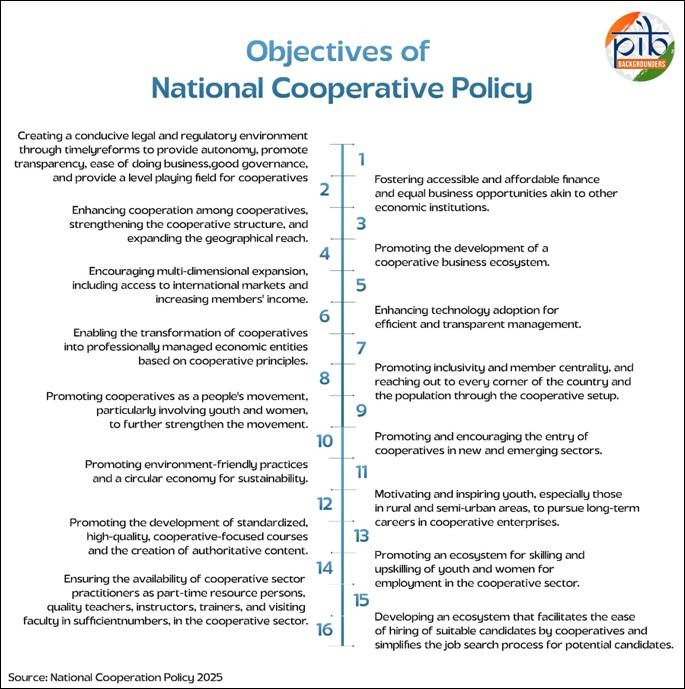
- 27 Jul 2025
In News:
- The National Cooperation Policy (NCP) 2025 marks a strategic roadmap for revitalizing India’s cooperative sector to meet the nation’s goal of becoming “Viksit” by 2047.
- Rooted in the ethos of Sahkar-se-Samriddhi, this policy aims to build on the unique strengths of India’s cooperative tradition, promote economic democratization, and uplift rural economies through collective participation.
- Mission: To create an enabling legal, economic, and institutional framework that will strengthen and deepen the cooperative movement at the grassroots level and facilitate the transformation of cooperative enterprises into professionally managed, transparent, technology-enabled, vibrant, and responsive economic entities to support production by the masses.
What is a Cooperative?
A cooperative is an autonomous association of persons, united voluntarily to meet their common economic, social, and cultural needs and aspirations through a jointly owned and democratically member-controlled enterprise.
Difference between Credit & Non-Credit Cooperatives
|
Aspect |
Credit Cooperatives |
Non-Credit Cooperatives |
|
Function |
Provide financial services like loans and savings |
Provide goods/services like farming inputs, housing, etc. |
|
Examples |
PACS, Urban Cooperative Banks |
Dairy, Marketing, Consumer, Housing Cooperatives |
The Indian cooperative movement has been the flag bearer of a participatory, people-led development model aimed at socio-economic upliftment at the grassroots level for more than a century.
Strategic Pillars:
The policy is structured around six mission pillars and 16 objectives:
- Strengthening the Foundation – Legal reforms, better governance, access to finance, digitalization.
- Promoting Vibrancy – Creating business ecosystems, expanding exports and rural clusters.
- Making Cooperatives Future-Ready – Technology integration, professional management, cooperative stack.
- Promoting Inclusivity and Deepening Reach – Promoting cooperative-led inclusive development and cooperatives as a people’s movement.
- Entering New and Emerging Sectors – Biogas, clean energy, warehousing, healthcare, etc.
- Shaping Young Generation for Cooperative Growth – Courses, training, employment exchanges.
Key Highlights of the Policy
Legislative and Institutional Reforms
- Encourage States to amend cooperative laws (Cooperative Societies Acts and Rules) to enhance transparency, autonomy and the ease of doing business.
- Promote digitalization of registrar offices and real-time cooperative databases.
- Revive sick cooperatives with institutional mechanisms.
Financial Empowerment
- Preserve and promote the three-tier Primary Agriculture Credit Societies - District Central Cooperative Bank - State Cooperative Bank credit structure.
- Promote cooperative banks and umbrella organizations (like National Urban Cooperative Finance & Development Corporation).
- Enable cooperative banks to handle government businesses.
Business Ecosystem Development
- Model cooperative villages with multipurpose PACS as growth engines.
- Encouraging States/UTs to develop at least one model cooperative village.
- Develop rural economic clusters (e.g., honey, spices, tea).
- Support branding under the ‘Bharat’ brand.
Model Cooperative Village
A Model Cooperative Village is a self-reliant rural unit developed through a cooperative-led, household-focused approach to enhance livelihoods and productivity.
Future-Readiness & Technology
- Develop a national ‘Cooperative Stack’ integrating with Agri-stack and databases.
- Promote Open Network for Digital Commerce (ONDC) and Government e-marketplace (GeM) platform integration.
- Encourage research and innovation through cooperative incubators and Centres of Excellence.
Open Network for Digital Commerce (ONDC)
The ONDC is a transformative initiative by the Department for Promotion of Industry and Internal Trade (DPIIT), Ministry of Commerce, Government of India aimed at democratizing digital commerce. Launched in April 2022, ONDC aims at promoting open networks for all aspects of exchange of goods and services over digital or electronic networks.
Government e-Marketplace (GeM)
GeM is an online platform for public procurement in India. The initiative was launched on August 09, 2016 by the Ministry of Commerce and Industry with the objective to create an open and transparent procurement platform for government buyers.
Inclusivity Measures
- Active participation of youth, women, SC/STs, and differently-abled in cooperatives.
- Model bye-laws for gender representation and transparent governance.
- Cooperative awareness campaigns in schools and colleges.
Model Bye-Laws
The Model Bye-laws are simply a representative sample and a guide to frame bye-laws of a multi-state cooperative society.
Sectoral Diversification
- Promote cooperatives in new and emerging sectors such as:
- Renewable energy,
- Waste management,
- Health and education,
- Mobile-based aggregator services (e.g., for plumbers, taxi drivers),
- Organic and natural farming,
- Biogas and ethanol production, etc.
Youth-Oriented Capacity Building
- Develop cooperative-focused courses in higher education institutions (HEIs).
- Build a national digital cooperative employment exchange.
- Promote financial and digital literacy among youth.
- Recruit quality cooperative teachers and resource persons.
Implementation and Monitoring
A robust multi-tier implementation structure is proposed:
- Implementation Cell within the Ministry of Cooperation with technical Project Management Unit support for effective and timely implementation of the policy.
- National Steering Committee on Cooperation Policy chaired by the Union Cooperation Minister will be constituted for overall guidance, inter-ministerial coordination, periodic policy review, etc.
- Policy Implementation and Monitoring Committee headed by the Union Cooperation Secretary for coordination with States, troubleshooting implementation bottlenecks, periodic monitoring and evaluation, etc.
India Skills Accelerator Initiative
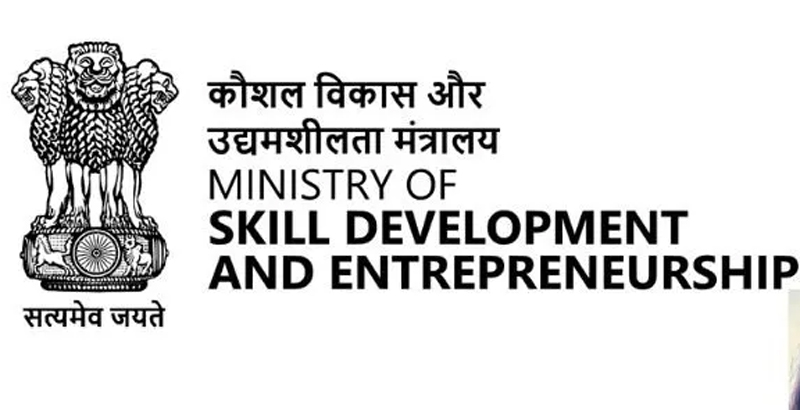
- 27 Jul 2025
In News:
The Ministry of Skill Development and Entrepreneurship (MSDE), in collaboration with the World Economic Forum (WEF), deliberated on the “India Skills Accelerator” initiative.
Key Highlights:
- Launched by: Ministry of Skill Development and Entrepreneurship (MSDE)
- Collaborating Partner: World Economic Forum (WEF)
- Announced on: 8th April 2025 during a high-level roundtable at Kaushal Bhawan, New Delhi
- Objective: To strengthen India's skilling ecosystem through inclusive upskilling and reskilling, enhanced government-industry collaboration, and investment in lifelong learning, particularly in high-growth sectors such as Artificial Intelligence, robotics, and clean energy.
- Key Features:
- Public-Private Collaboration: Structured as a national platform bringing together government and private sector stakeholders; notably, 2 of the 4 co-chairs are from the private sector.
- Focus Areas:
- Promotes scalable and adaptive training models
- Facilitates agile career transitions for the workforce
- Aligns education and training with evolving industry demands
- Strategic Approach:
- Raising awareness and changing perceptions about future skills
- Encouraging cross-sectoral collaboration and sharing of best practices
- Reforming institutional frameworks to support a responsive and dynamic skilling system
- Significance: The initiative is aligned with India’s goal of building a future-ready workforce by addressing skill mismatches and preparing youth for rapidly transforming industries. It contributes to the broader national missions like Skill India, Digital India, and Make in India.
AI for India 2.0 Programme
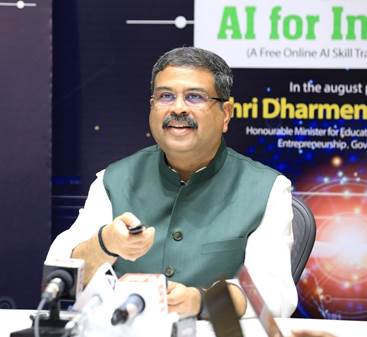
- 27 Jul 2025
In News:
The Minister of State (Independent Charge), Ministry of Skill Development and Entrepreneurship (MSDE), informed the Rajya Sabha about AI for India 2.0 Programme.
Key Highlights:
- Launched: 15th July 2023, on the occasion of World Youth Skills Day
- Implementing Bodies: Joint initiative by Skill India and GUVI (an ed-tech platform incubated by IIT Madras and IIM Ahmedabad)
- Accreditation: Recognized by NCVET and IIT Madras
- Objective: To democratize access to emerging technologies like Artificial Intelligence (AI) and Machine Learning (ML), especially among youth from non-English-speaking and rural backgrounds.
- Key Features:
- Free Online Training: Offers no-cost courses in AI and ML.
- Vernacular Focus: Educational content provided in 9 Indian languages including Hindi, Telugu, and Kannada, enhancing accessibility for non-English speakers.
- Target Audience: College students, recent graduates, and early-career professionals, with a focus on learners from rural regions.
- Course Content: Includes expert-curated Python programming courses designed to enhance technical proficiency.
- National Recognition: The programme is nationally accredited, ensuring quality and credibility.
- Significance: This initiative aims to empower the Indian youth by equipping them with industry-relevant digital skills, thus aligning with the broader goals of digital inclusion and skilling under Digital India and Skill India missions.
HOPS-315 Discovery
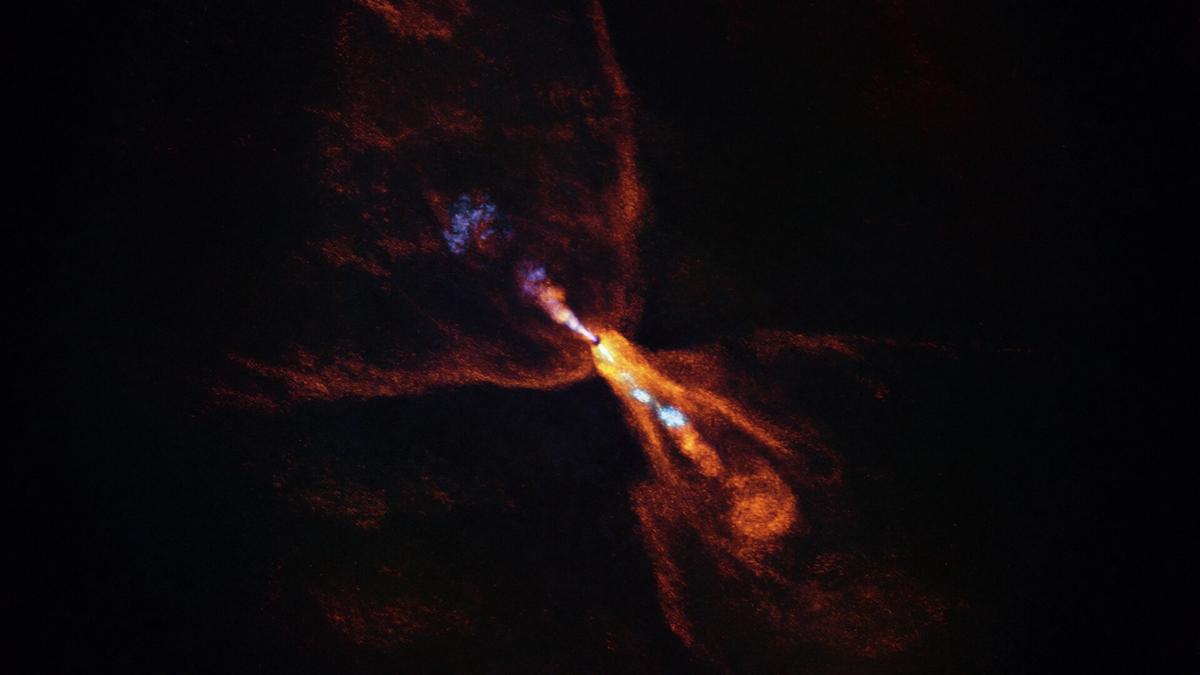
- 26 Jul 2025
In News:
Astronomers, for the first time, have observed solid rock condensation from vapor around a newborn protostar, HOPS-315, located in the Orion Molecular Cloud. This breakthrough offers unprecedented insight into the earliest stages of rocky planet formation, similar to how Earth likely formed.
About HOPS-315
- Type: Protostar (young, still-forming star)
- Location: Orion constellation (~1,300 light-years from Earth)
- Key Feature: Surrounded by a tilted protoplanetary disc of dust and gas, allowing deep observational access to its planet-forming region.
Instruments & Research Collaboration
- Telescopes Used:
- James Webb Space Telescope (JWST) – Spectral analysis via NIRSpec and MIRI instruments.
- Atacama Large Millimeter/submillimeter Array (ALMA) – Millimeter-wavelength mapping of gases and dust.
- Research Consortium: Scientists from France, the Netherlands, Sweden, Taiwan, and the USA.
- Published In: Nature (2025)
Key Observations & Findings
- Crystallization Process:
- Initial heating vaporizes dust (~1300 K near 1 AU from star).
- Subsequent cooling condenses vapor into refractory minerals (e.g., forsterite, enstatite, silica).
- Spectroscopic Evidence:
- Silicon monoxide (SiO) gas detected at ~470 K.
- Presence of crystalline silicates within 2.2 AU of the star — the zone where rocky planets typically form.
- ALMA Findings:
- Cooler gas in outer disc.
- Absence of slow SiO outflows confirms crystals are part of the disc atmosphere — not stellar jets.
Why It Matters
|
Significance |
Explanation |
|
First-Ever Observation |
Direct evidence of solid rock condensing from vapor around a protostar. |
|
Planet Formation Insight |
Confirms the earliest phase of rocky planet creation — from vapor to mineral solidification. |
|
Solar System Parallel |
Chemistry mirrors early Earth meteorites, suggesting universal mechanisms in rocky planet formation. |
|
Rare Viewing Geometry |
Tilted disc of HOPS-315 provided rare access to inner disc regions, usually obscured in other systems. |
National Sports Governance Bill 2025
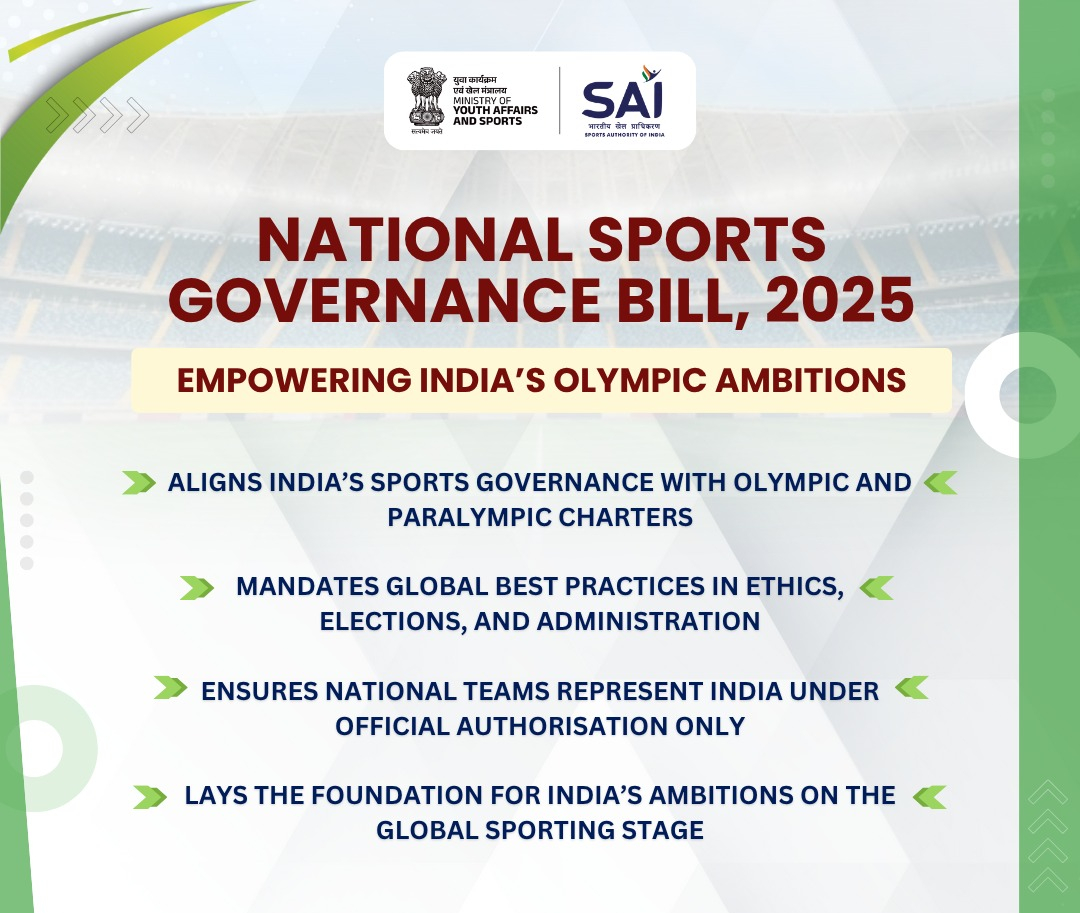
- 26 Jul 2025
In News:
The National Sports Governance Bill, 2025, introduced in the Lok Sabha, marks a significant legislative effort to restructure and reform India's sports administration framework. It seeks to replace the non-binding National Sports Code of 2011 with a statutory, enforceable law that prioritizes transparency, athlete welfare, and institutional accountability.
Key Objectives of the Bill
- Establish a uniform governance system across all sports federations.
- Legally regulate bodies like the Board of Control for Cricket in India (BCCI).
- Align Indian sports governance with international standards, particularly ahead of India’s 2036 Olympic bid.
- Introduce dedicated institutions for oversight, dispute resolution, and electoral transparency.
Major Structural Changes
1. Statutory Institutions Established
|
Institution |
Function |
|
National Sports Board (NSB) |
Recognition, funding eligibility, ethics compliance, and oversight of NSFs. |
|
National Sports Tribunal |
Dispute resolution (e.g., selection, elections, governance conflicts). |
|
National Sports Election Panel |
Ensures free, fair, and independent elections of sports bodies. |
Governance Reforms in National Sports Bodies
- Recognition & Regulation: All National Sports Federations (NSFs), including the BCCI, must seek annual recognition from the NSB.
- Affiliation: National bodies must have aligned state and district units, and comply with international federations' statutes.
- Code of Ethics: Mandatory for members, athletes, coaches, sponsors, and officials.
- Grievance Redressal: Internal mechanisms must be instituted by each federation.
Administrative Structure of National Bodies
- General Body: Equal representation from all affiliates and ex-officio members.
- Executive Committee: Maximum 15 members, mandatory inclusion of at least 4 women and 2 elite athletes.
- Age Limit: Officials must be aged 25–70 years (exceptions up to 75 years if permitted by international rules).
- Term Limit: Max three consecutive terms of four years in the same or different posts, with a cooling-off period.
Role of the National Sports Board (NSB)
The NSB acts as a central regulatory authority, similar to SEBI in financial markets.
Powers and Functions:
- Granting/suspending/canceling recognition of sports bodies.
- Investigating misuse of funds or violation of athlete welfare norms.
- Issuing guidelines for ethics, governance, and international compliance.
- Forming ad-hoc bodies in case of international de-recognition.
Composition: Chairperson and members with expertise in sports governance, law, and public administration. Appointed by the central government through a search-cum-selection committee.
National Sports Tribunal
A quasi-judicial body to resolve disputes involving federations, athletes, and administration.
Composition:
- Chairperson: Sitting/former Supreme Court Judge or Chief Justice of a High Court.
- Two expert members from sports, law, or public administration.
Appointed by: A committee comprising the Chief Justice of India (or nominee), the Law Secretary, and the Sports Secretary.
Appeals: Lie directly to the Supreme Court, except where international regulations mandate the Court of Arbitration for Sport (CAS) in Switzerland.
Jurisdiction Excludes: Disputes related to international sports events and internal matters of global sports bodies.
Electoral Oversight
A National Sports Election Panel will be constituted, comprising:
- Former Election Commissioners of India
- Former Chief Electoral Officers and Deputy Election Commissioners
Purpose:
- Supervise elections of executive committees of national federations.
- Ensure electoral integrity at the state and district levels via affiliate panels.
Legal Enforceability vs. Sports Code 2011
|
Parameter |
Sports Code 2011 |
Governance Bill 2025 |
|
Legal Status |
Advisory guidelines |
Statutory law |
|
Enforceability |
Non-binding |
Legally enforceable |
|
Gender/Athlete Representation |
Not mandated |
4 women & 2 elite athletes required |
|
Dispute Resolution |
Ministry-driven |
National Sports Tribunal |
|
BCCI Regulation |
Outside purview |
Brought under framework |
|
Election Oversight |
Ministry oversight |
Independent election panel |
|
RTI Applicability |
Exempt (BCCI) |
Mandatory for recognized bodies |
Bringing BCCI Under the Legal Framework
Historically resisting regulation, the BCCI will now be required to:
- Register annually with the NSB.
- Submit to the National Sports Tribunal for disputes.
- Comply with RTI Act provisions, if it seeks government recognition and funding.
This change is significant as cricket is now part of the 2028 Los Angeles Olympics, making BCCI subject to international governance norms under the Olympic Charter.
Provision for Exemptions
The central government may exempt specific sports bodies from certain provisions of the Bill, in the public interest or for the promotion of specific sports disciplines.
Parallel Legislation: Anti-Doping Amendment
The National Anti-Doping (Amendment) Bill, 2025 was also introduced, addressing World Anti-Doping Agency (WADA) concerns. It:
- Retains the National Board for Anti-Doping, but strips it of oversight over NADA.
- Restores NADA’s independence, aligning Indian anti-doping efforts with international norms.
Henley Passport Index 2025
- 26 Jul 2025
In News:
The Henley Passport Index 2025 reveals significant shifts in global mobility, highlighting increased visa-free access for citizens worldwide. India has made notable progress in the latest rankings, climbing eight places to reach the 77th position, up from 85th in 2024. Indian passport holders can now access 59 countries without a prior visa.
What is the Henley Passport Index?
The Henley Passport Index is a global ranking of passports based on the number of destinations their holders can enter without a visa or with visa-on-arrival. It is compiled by Henley & Partners using data from the International Air Transport Association (IATA). The index, started in 2006, now covers 199 passports and 227 travel destinations.
India’s Passport Performance:
- Current Rank (2025): 77th
- Visa-Free Access: 59 countries
- Previous Rank (2024): 85th
- Lowest Rank: 90th in 2021
- Best Rank: 71st in 2006
India's improved standing reflects enhanced global engagement and evolving diplomatic relations. However, it still trails far behind leading Asian and Western nations in terms of travel freedom.
Top 10 Most Powerful Passports (2025):
- Singapore – 193 visa-free destinations
- Japan, South Korea – 190 destinations
- Germany, France, Italy, Spain, Ireland, Denmark, Finland – 189 destinations
- Sweden, Austria, Belgium, Portugal, Netherlands, Luxembourg, Norway – 188 destinations
- Greece, Switzerland, New Zealand – 187 destinations
- United Kingdom – 186 destinations
- Australia, Czechia, Poland, Malta, Hungary – 185 destinations
- Canada, Estonia, United Arab Emirates (UAE) – 184 destinations
- Croatia, Latvia, Slovakia, Slovenia – 183 destinations
- United States, Iceland, Lithuania – 182 destinations
Note: The UAE is the only significant climber in the top 10, jumping from 42nd to 8th over the past decade.
Bottom 10 Least Powerful Passports (2025):
99. Afghanistan – 25 destinations
98. Syria – 27 destinations
97. Iraq – 30 destinations
96. Pakistan, Yemen, Somalia – 32 destinations
95. Libya, Nepal – 38 destinations
94. Bangladesh, Eritrea, Palestinian Territories – 39 destinations
93. North Korea – 40 destinations
92. Sudan – 41 destinations
91. Sri Lanka – 42 destinations
Global Trends in Passport Power:
- The global average of visa-free destinations has risen from 58 in 2006 to 109 in 2025, indicating increasing global mobility.
- Asian dominance continues, with Singapore, Japan, and South Korea topping the list.
- European Union countries maintain strong positions, reflecting widespread bilateral agreements.
- The United States and United Kingdom, once top-ranking, have seen a decline in influence. The US ranks 10th (182 destinations), while the UK stands at 6th (186 destinations).
- Afghanistan remains at the bottom of the list, with access to just 25 countries, highlighting stark global disparities in travel freedom.
Significance:
- The Henley Passport Index reflects soft power, diplomatic ties, and economic standing of nations.
- India's rising passport strength indicates improved bilateral relations, trade diplomacy, and international mobility.
National Critical Mineral Mission
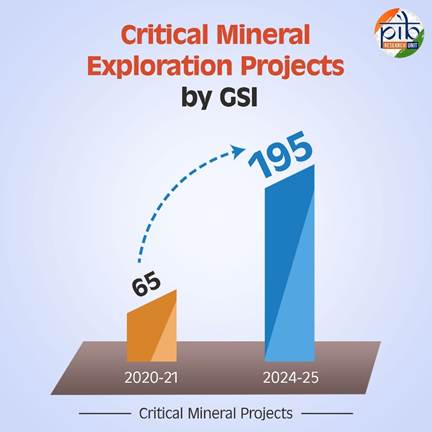
- 26 Jul 2025
In News:
The National Critical Mineral Mission (NCMM), launched by the Government of India in 2025, represents a strategic initiative to secure India's access to essential critical minerals, vital for clean energy, advanced electronics, defence, and emerging technologies. It aims to address India’s dependence on imports, strengthen domestic capacity, and build resilient supply chains.
What are Critical Minerals?
Critical minerals are those essential to economic development and national security, often marked by limited domestic availability and a high risk of supply disruption. These include lithium, cobalt, nickel, rare earth elements (REEs), graphite, and silicon, which are central to electric vehicles (EVs), solar panels, semiconductors, wind turbines, and defence applications.
Why NCMM? Strategic Context
- Energy Transition: India is 100% import-dependent for lithium, cobalt, and rare earths—crucial for EVs and energy storage.
- Tech Sovereignty: Strategic autonomy in AI, defence, and semiconductors depends on secure mineral access.
- Geopolitical Concerns: China controls 70–90% of global critical mineral processing. Diversifying supply chains is essential.
- Industrial Push: Schemes like PLI for EVs, electronics, and solar energy require a reliable mineral base.
- Climate Commitments: India aims to reduce emissions intensity by 45% (from 2005 levels) and reach net-zero by 2070.
Components of the National Critical Mineral Mission (NCMM)
Key Features of NCMM
1. Legal and Policy Framework
- Enacted under the Ministry of Mines in 2025.
- 30 critical minerals identified (24 inserted into Part D of the First Schedule of the MMDR Act, 1957).
- The Centre now has exclusive authority to auction mining leases for these minerals.
2. Domestic and Foreign Sourcing Targets (2024–2030)
|
Objective |
Target |
|
Domestic Exploration Projects |
1,200 |
|
Overseas Projects by PSUs |
26 |
|
Overseas Projects by Private Sector |
24 |
|
Recycling Incentive Scheme (in kilotons) |
400 |
|
Strategic Mineral Stockpile |
5 |
3. Capacity Building and Innovation
|
Objective |
Target |
|
Patents in Critical Mineral Tech |
1,000 |
|
Workforce Trained |
10,000 |
|
Processing Parks |
4 |
|
Centres of Excellence |
3 |
Sectoral Applications of Critical Minerals
- Solar Energy: Silicon, tellurium, indium, and gallium in photovoltaic cells; India’s solar capacity is 64 GW.
- Wind Energy: Neodymium and dysprosium in turbine magnets; target capacity: 140 GW by 2030.
- EVs: Lithium, nickel, cobalt in batteries; goal: 6–7 million EVs by 2024.
- Energy Storage: Lithium-ion battery storage systems; key for grid balancing and renewables.
Implementation Highlights
Exploration and Domestic Production
- 195 GSI projects launched in 2024–25, including 35 in Rajasthan.
- Over 100 mineral blocks identified for auction.
- Offshore exploration for polymetallic nodules (cobalt, REEs, nickel, manganese) underway.
- UNFC classification and MEMC Rules, 2015, guide the exploration methodology.
Asset Acquisition Abroad
- KABIL (Khanij Bidesh India Ltd):
- MoU with CAMYEN (Argentina) for lithium over 15,703 hectares.
- Ties with Australia for cobalt/lithium via Critical Mineral Office (CMO).
- Public–Private Partnership support via funding, MEA coordination, and guidelines for overseas investments.
Recycling and Circular Economy
- Incentives for mineral recovery from e-waste, fly ash, and tailings.
- Emphasis on building a formal recycling infrastructure.
- Current battery and electronics recycling sector is informal and lacks scale.
Processing and Midstream Infrastructure
- Development of dedicated Mineral Processing Parks.
- Encourage public–private partnerships and offer PLI-style incentives for refining technologies.
Challenges in India’s Critical Mineral Ecosystem
- High Import Dependence: 100% for lithium, cobalt, REEs.
- Underdeveloped Infrastructure: Lack of domestic refining, separation, and conversion capacity.
- Low Private Sector Participation: Technical and financial barriers deter participation.
- ESG Concerns: Mining zones often overlap with ecologically or tribally sensitive regions.
- Legal Bottlenecks: Environmental clearance delays due to weak ESG compliance.
- Informal Recycling Ecosystem: Fragmented, unregulated battery/e-waste recovery systems.
Strategic Roadmap Ahead
- Strengthen Exploration: Expand GSI capabilities; fund viability gap to attract investment.
- Diversify Global Sources: Engage in “friendshoring” with Australia, Argentina, U.S., etc.
- Build Midstream Capacity: Set up refining zones, mineral parks, and conversion units.
- Sustainable and Inclusive Mining: Implement ESG mandates and tribal welfare frameworks.
- Enhance Circular Economy: Provide tax breaks and subsidies for high-efficiency recovery systems.
Institutional Support
- IREL (India) Limited:
- Produces ilmenite, zircon, sillimanite, and rare earths.
- Operates Rare Earth Extraction Plant (Chatrapur, Odisha) and Refining Unit (Aluva, Kerala).
- Profitable PSU with ?14,625 million turnover (2021–22), including ?7,000 million exports.
Conclusion
India's National Critical Mineral Mission (NCMM) is pivotal for achieving strategic autonomy, industrial growth, and clean energy goals. By integrating domestic exploration, international partnerships, midstream processing, recycling, and regulatory reform, NCMM lays the foundation for a resilient and self-reliant mineral ecosystem. Its success is critical for India’s leadership in green technologies, manufacturing, and strategic geopolitics—making it a cornerstone initiative under Atmanirbhar Bharat and India's 21st-century industrial vision.
India–UK Comprehensive Economic and Trade Agreement (CETA)
- 26 Jul 2025
In News:
India and the United Kingdom signed the Comprehensive Economic and Trade Agreement (CETA) in July 2025, marking a landmark Free Trade Agreement (FTA) between India and a major developed economy. The agreement is part of the broader India–UK Vision 2035, aiming to strengthen bilateral ties across trade, technology, defence, climate, and education.
Key Features of CETA
1. Trade in Goods
- Zero-duty access for 99% of Indian exports to the UK, covering major sectors:
- Labour-intensive: textiles, leather, footwear, gems & jewellery, toys, marine products.
- High-growth: auto components, engineering goods, organic chemicals.
- Improved access for Indian agricultural products (tea, spices, coffee, fruits, meats) to UK’s $63.4 billion agri-market (dairy excluded).
2. Trade in Services
- First-of-its-kind comprehensive services commitment by the UK.
- Expands Indian access in: IT/ITeS, financial & legal services, architecture, education, telecom, consulting, and engineering.
3. Labour Mobility
- Liberalised visa norms for:
- Contractual Service Suppliers
- Intra-Corporate Transferees
- Independent Professionals (e.g. chefs, yoga instructors, musicians)
- Double Contribution Convention (DCC):
- Exempts Indian professionals and their employers from UK social security contributions for up to 3 years.
4. Inclusive Growth
- Benefits designed for MSMEs, women entrepreneurs, artisans, farmers, and startups.
- Provisions include:
- Dedicated SME contact points
- Digital trade facilitation
- Paperless customs
India–UK Vision 2035: 5 Strategic Pillars
1. Growth and Jobs
- Target: Double bilateral trade from USD 56 bn to USD 112 bn by 2030.
- Initiatives:
- New Bilateral Investment Treaty (BIT)
- UK–India Infrastructure Financing Bridge
- British International Investment (BII)
- Regulatory harmonisation in legal and financial services.
2. Technology and Innovation
- Focus Areas: AI, 6G, semiconductors, biotech, cybersecurity, biomaterials.
- Key Initiatives:
- Joint AI research centre
- India–UK Critical Minerals Guild
- Startup collaboration via incubators and biofoundries.
3. Defence and Security
- Launch of 10-Year Defence Industrial Roadmap: R&D in electric propulsion, underwater warfare, directed energy weapons.
- Deepening:
- 2+2 Ministerial Dialogue
- Military exercises, intelligence sharing
- Indian Ocean logistics cooperation
4. Climate and Clean Energy
- Areas of Collaboration: Offshore wind, small modular nuclear reactors (SMRs), carbon markets, blue carbon research.
- Joint commitment to:
- International Solar Alliance (ISA)
- One Sun One World One Grid (OSOWOG)
- Net Zero Innovation Partnership
5. Education and People-to-People Ties
- UK universities allowed to open campuses in India.
- Launch of dual degree programmes, mutual qualification recognition.
- Young Professionals Scheme for career mobility.
- Green Skills Partnership to bridge climate tech skill gaps.
Strategic Importance for India
|
Sector |
Impact |
|
Economy |
Enhances export potential, promotes Make in India, and attracts FDI. |
|
Employment |
Boosts jobs in textiles, IT, food processing, and engineering. |
|
Mobility |
Facilitates professional migration and global exposure. |
|
Technology |
Drives domestic innovation in AI, semiconductors, climate tech. |
|
Defence |
Supports self-reliance in high-tech military R&D. |
|
Climate Action |
Aids India’s Net Zero goals via access to green finance and clean energy tech. |
|
Global Positioning |
Strengthens India’s influence in WTO, UN, IMF, and other multilateral fora. |
Paika Rebellion (1817)
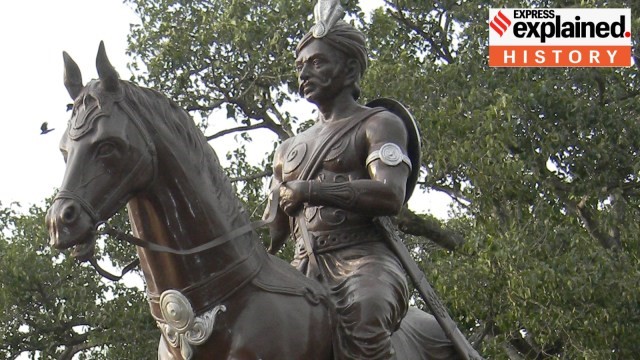
- 25 Jul 2025
In News:
The recent exclusion of the Paika Rebellion of 1817 from NCERT’s Class VIII history textbook triggered political backlash in Odisha. Former Chief Minister Naveen Patnaik termed the omission a “huge dishonour” to the Paika warriors, prompting NCERT to clarify that the topic would be included in the second volume of the textbook to be released later in 2025.
Who were the Paikas?
- The Paikas (literally "foot soldiers") were military retainers traditionally employed by the Gajapati kings of Odisha since the 16th century.
- In exchange for military service, they were granted hereditary rent-free lands (nish-kar jagirs), which they cultivated during peacetime.
- Under British rule, their privileges eroded, and they faced land dispossession, economic hardship, and social marginalisation.
Background to the Revolt
- In 1803, the British East India Company annexed Odisha. Colonel Harcourt marched from Madras to Cuttack, defeating feeble Maratha opposition.
- A deal with King Mukunda Deva II of Khurda promised ?1 lakh and four parganas (Lembai, Rahanga, Surai, Chabiskud) for safe passage, but the British defaulted.
- Jayee Rajguru, the king’s adviser, mobilised 2,000 Paikas to confront the British. Though part payment was made, the parganas were not returned.
- Rajguru was arrested and executed on 6 December 1806 for waging war against the British. The king was dethroned and exiled, and the Barunei Fort was demolished.
Causes of the Paika Rebellion
- Loss of Traditional Privileges:
- Confiscation of rent-free lands after British land settlements.
- End of royal patronage.
- Land Alienation & Tax Burden:
- Local Odia landowners were forced to sell land to Bengali absentee landlords.
- Revenue demands shifted to rupee payments, affecting marginal farmers and tribal communities.
- Salt Monopoly & Trade Restrictions: British control over salt trade, particularly after 1814, increased hardship for inland hill populations.
- Cultural and Political Suppression: The decline of local leadership and traditions under colonial authority contributed to growing dissent.
Course of the Rebellion (1817)
- In March 1817, approximately 400 Kondh tribal fighters from Ghumusar marched toward Khurda.
- They were joined by Bakshi Jagabandhu Bidyadhar, the former commander-in-chief of Khurda and ex-holder of the Rodanga estate.
- The rebels:
- Attacked the police station at Banpur
- Burned colonial buildings
- Looted the treasury
- Killed several British officials
- The rebellion spread across southern and central Odisha. Despite initial successes, the British suppressed the revolt.
- Jagabandhu evaded capture for years and surrendered in 1825 under negotiated terms.
Contemporary Significance and Political Debate
- The Paika Rebellion is widely regarded in Odisha as an early expression of anti-colonial resistance.
- In 2017, the Odisha government demanded that the uprising be recognised as the “First War of Independence”, predating the 1857 revolt.
- The Union Government, while not granting this status, acknowledged it as one of the early popular uprisings against colonial rule.
- National Recognition Efforts:
- In 2017, PM Narendra Modi felicitated over 200 descendants of Paika rebels.
- In 2019, President Ram Nath Kovind laid the foundation for a Paika Memorial at Barunei foothills, the rebellion’s epicentre.
- In 2024–25, the new BJP-led government in Odisha announced fast-tracked development of the Paika Academy and Memorial.
U.S. withdraws from UNESCO for the third time
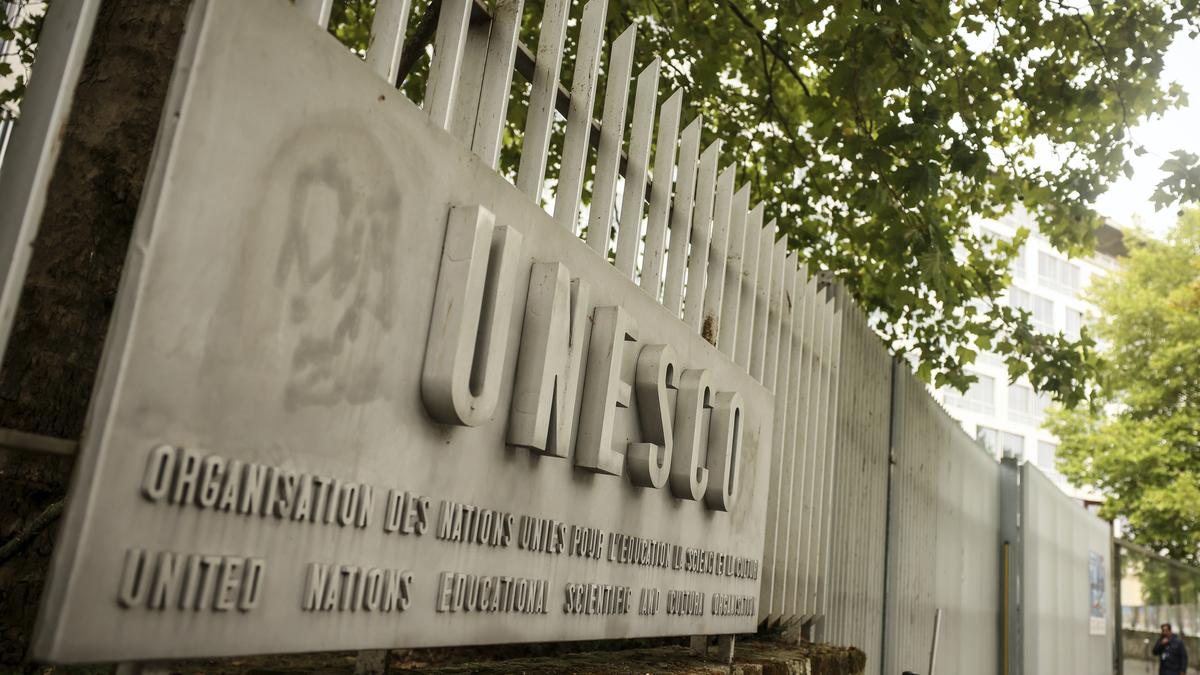
- 25 Jul 2025
In News:
In 2025, the United States announced its decision to withdraw from the UNESCO, citing perceived bias against Israel. This move comes just two years after rejoining the organization in 2023 and marks the third U.S. exit, and the second under the Trump administration.
What is UNESCO?
- Full Form: United Nations Educational, Scientific and Cultural Organization
- Founded: 16th November 1945
- Headquarters: Paris, France
- Membership: 194 Member States and 12 Associate Members
- India's Role: A founding member of UNESCO
Mandate and Key Functions
- Education: Promote inclusive and equitable lifelong learning (aligned with SDG 4)
- Culture: Safeguard tangible and intangible cultural heritage through tools like the World Heritage List
- Science: Advance climate science, AI ethics, and sustainable development
- Global Understanding: Foster mutual respect, peace, and international cooperation
Timeline of U.S. Exits from UNESCO
|
Year |
Administration |
Reason for Exit |
|
1984 |
Reagan |
Accusations of mismanagement and pro-Soviet bias |
|
2017 |
Trump (1st Term) |
Alleged anti-Israel bias after Palestine was accepted as a member in 2011 |
|
2025 |
Trump (2nd Term) |
Continued allegations of bias; exit scheduled by December 2026 |
- Rejoined: Under Biden Administration in 2023
Global Implications of U.S. Withdrawal
1. Financial Consequences
- The U.S. was a major contributor to UNESCO.
- Its exit leaves a budget deficit, affecting:
- Education initiatives
- Cultural heritage projects
- Climate and AI research
- Past example: U.S. and Israel froze funding after Palestine’s admission in 2011.
2. Geopolitical Rebalancing
- China’s influence may expand in UNESCO’s absence, potentially altering agendas and narratives.
- Risk of geopolitical polarization in multilateral agencies.
3. Weakening of Multilateralism
- Unpredictable U.S. engagement weakens global cooperation mechanisms.
- Undermines trust and support for UN agencies, especially in developing countries.
4. Impact on Science and Education
- Reduced backing for global programs in:
- STEM education for girls
- AI ethics frameworks
- Climate change awareness and mitigation
Implications for India
Opportunities
- Diplomatic leverage: Greater voice in shaping global agendas on education, AI, and heritage.
- Soft power expansion: Through advocacy for Indian culture and World Heritage nominations.
- South-South cooperation: Leadership in global education and sustainable development dialogue.
Challenges
- Funding constraints could affect:
- Ongoing Indian UNESCO projects (e.g., Nalanda, Sundarbans)
- Educational programs in rural/tribal regions
- Increased pressure on India to contribute more financially
- Rising Chinese influence could marginalize India’s strategic interests
Long-Billed Bush Warbler
- 25 Jul 2025
In News:
In a significant ornithological event, a team of birders has confirmed the first Indian sighting in 46 years of the elusive Long-billed Bush Warbler (Locustella major). The bird was observed in dense willow thickets at an altitude of over 3,200 metres in Suru Valley, Ladakh.
About Long-Billed Bush Warbler
- Scientific Name: Locustella major
- Common Name: Long-Billed Bush Warbler (formerly Long-billed Grasshopper Warbler)
- Type: Medium-sized, skulking songbird of the bush warbler group
- Size: Approximately 15–17 cm in length
- Plumage:
- Brownish-olive upperparts with fine streaking
- Pale underparts (whitish or buff)
- Both sexes appear similar
- Call: Produces an insect-like clicking sound used for territory marking and mate attraction
Distribution and Habitat
- Global Range:
- Limited distribution in the mountains of Central Asia
- Documented in India, Pakistan, China, and Tajikistan
- Preferred Habitat:
- Altitude: 2,400–3,600 metres
- Found on grassy slopes with bushes and weeds
- Upland terraced cultivation and forest edge clearings
- Often observed among Rumex, sea buckthorn, and Ribes gooseberry shrubs near spruce forests
Conservation Status
- IUCN Red List: Near Threatened (NT)
- Reasons for decline include habitat loss, especially due to conversion of bushland into agricultural fields.
Significance of the 2025 Sighting
- The last confirmed Indian record was in 1979 near Sankoo in Kargil, by researchers from Southampton University.
- Historically, the species was relatively common in Dras and Suru valleys until the early 20th century.
- The recent sighting aligns with records from nearby Gilgit-Baltistan (2022–2025), where the species has been increasingly documented at similar altitudes (3,000–3,100 m).
Preah Vihear Temple Dispute

- 25 Jul 2025
In News:
Tensions between Thailand and Cambodia have sharply escalated in recent months, marked by armed clashes, airstrikes, and diplomatic fallout, all centering around the Preah Vihear Temple—a centuries-old Hindu monument of immense cultural and geopolitical significance.
About Preah Vihear Temple
- Location: Preah Vihear Province, northern Cambodia, atop a cliff in the Dangrek Mountain range, near the Cambodia–Thailand border.
- Religious Affiliation: Hindu temple dedicated to Lord Shiva.
- Historical Background:
- Constructed during the Khmer Empire, primarily in the 11th and 12th centuries.
- Key patrons: King Suryavarman I (1002–1050) and King Suryavarman II (1113–1150).
- UNESCO World Heritage Site: Inscribed in 2008 for its exceptional architectural and historical value.
Architectural Features
- Exemplifies Khmer temple architecture with a linear arrangement of sanctuaries linked by pavements and staircases over an 800-metre-long axis.
- Contains over five gopuras (monumental gateways) connected by a raised path and tiered platforms.
- Mixture of stone and wooden roofing, though many structures are partially in ruins.
Territorial Dispute Overview
- Historical Basis:
- Dispute stems from differing interpretations of a 1907 French map, which placed the temple inside Cambodian territory.
- Thailand disputes the map, arguing lack of formal acceptance.
- International Court of Justice (ICJ) Rulings:
- 1962: ICJ ruled the temple belongs to Cambodia, citing Thailand’s implicit acceptance of the 1907 map.
- Thailand was ordered to withdraw troops and return artifacts taken since 1954.
- 2013 (Reaffirmation): ICJ clarified that surrounding areas—particularly a 4.6 sq. km. disputed zone—also belong to Cambodia.
Major Flashpoints in the Conflict
- 2008: Cambodia registers Preah Vihear as a UNESCO World Heritage Site, triggering nationalist backlash in Thailand.
- 2008–2011: Border skirmishes escalate, culminating in a 2011 clash that killed at least 15 people.
- 2025 Escalation:
- Renewed violence erupted in July 2025, after a series of provocations:
- May 2025: Cambodian soldier killed.
- July 2025: Two Thai soldiers injured in landmine blasts.
- July 24, 2025: Armed conflict intensifies—Thai airstrikes target Cambodian positions near the temple.
- Casualties: At least 9 civilians killed, 14 injured in Thai provinces bordering Cambodia.
- Both nations expelled ambassadors and blamed each other for violations of sovereignty.
- Renewed violence erupted in July 2025, after a series of provocations:
Significance of the Dispute
- Cultural: Preah Vihear is a sacred site and national symbol for both nations.
- Strategic: Its location atop a cliff offers military advantage and control over surrounding terrain.
- Diplomatic: The temple remains a fault line in bilateral ties, with unresolved territorial claims despite multiple ICJ verdicts.
Palna Scheme
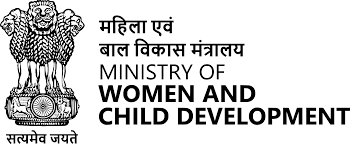
- 25 Jul 2025
In News
Launched by the Ministry of Women and Child Development (MoWCD) under the Samarthya vertical of Umbrella Mission Shakti, the Palna Scheme aims to provide safe, accessible, and quality day care (crèche) facilities for children aged 6 months to 6 years across all States and Union Territories, effective from 1st April 2022.
Key Features:
- Objective: To support working mothers by providing crèche services ensuring:
- Safety and well-being of children
- Nutritional support
- Early childhood care and cognitive development
- Health check-ups, growth monitoring, and immunization
- Target Beneficiaries: All children aged 6 months to 6 years. Services are irrespective of mothers' employment status, covering both organized and unorganized sectors.
- Types of Crèches:
- Standalone Crèches
- Anganwadi-cum-Crèches (AWCCs)
Anganwadi-cum-Crèche (AWCC) Model
- Utilizes existing Anganwadi Centres, the world’s largest public childcare infrastructure, to provide full-day childcare services.
- Ensures last-mile delivery of services in a safe and secure environment.
- Supports women’s workforce participation by relieving unpaid childcare burden.
Timings & Flexibility
- Crèches to operate for 26 days/month and 7.5 hours/day, with timings adapted to local needs.
- States/UTs may adjust timings under Standard Operating Procedures based on community work patterns.
Funding Pattern
|
Category |
Centre:State Funding Ratio |
|
General States |
60:40 |
|
North Eastern & Special Category States |
90:10 |
|
UTs with Legislature |
60:40 |
|
UTs without Legislature |
100% Central Assistance |
Integrated Services Offered
- Day care and sleeping facilities
- Early stimulation for children below 3 years
- Pre-school education for 3–6 years
- Supplementary nutrition (locally sourced)
- Growth monitoring, health check-ups & immunization
Implementation Status (As of July 2025)
- Total Envisioned AWCCs (FY 2022–26): 17,000
- AWCCs Approved by MoWCD (as of July 2025): 14,599
- Implemented based on proposals from States/UTs with cost-sharing as per applicable funding norms.
Significance
- Addresses the rising need for formal childcare due to:
- Increasing nuclear families
- Greater women’s participation in the workforce
- Migration, urbanization, and limited informal support structures
- Aligns with SDG 8 (Decent Work and Economic Growth) by formalizing care work and supporting inclusive economic participation.
Manual Scavenging
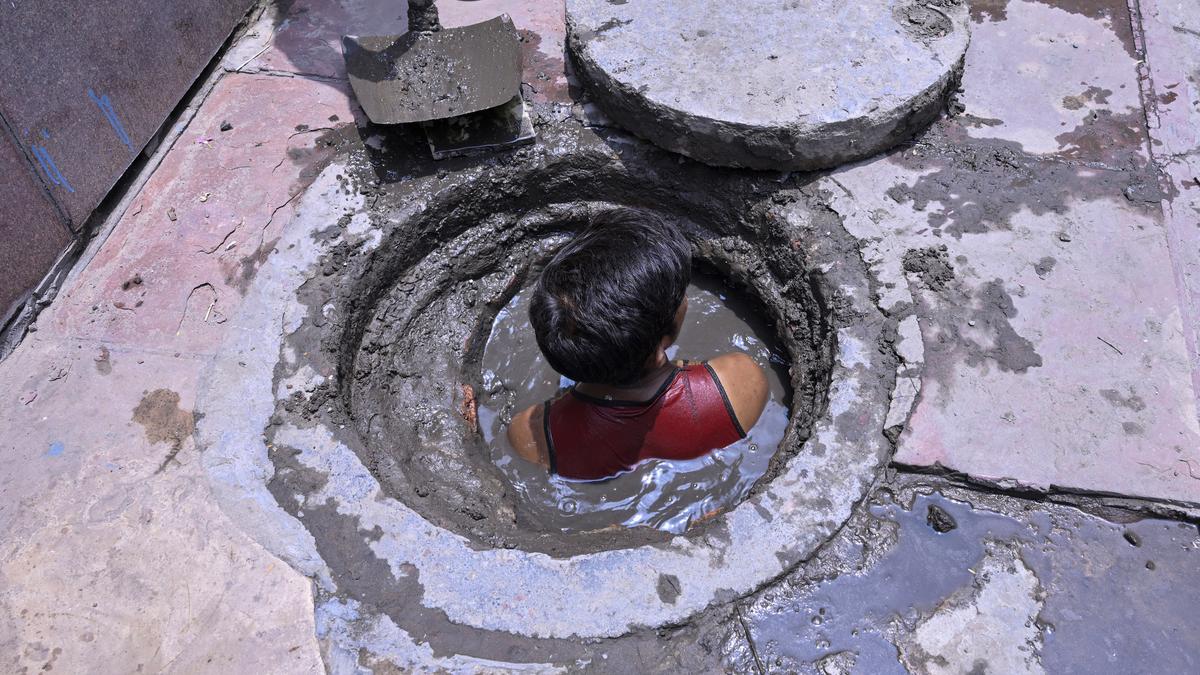
- 24 Jul 2025
In News:
A recent social audit conducted by the Ministry of Social Justice and Empowerment has exposed alarming lapses in the safety and legal safeguards meant to protect sanitation workers. The study, which examined 54 sewer-related deaths across 17 districts in eight States and Union Territories during 2022 and 2023, found that over 90% of the workers who died had no access to basic safety gear or mechanised equipment. Despite legal bans and policy interventions, manual scavenging and hazardous sewer cleaning continue, often resulting in fatalities, primarily among marginalized communities.
What is Manual Scavenging?
Manual scavenging involves the manual handling of human excreta from dry latrines, open drains, sewers, and septic tanks. Although officially prohibited under the 2013 Act, the practice continues under different forms, particularly through hazardous sewer and septic tank cleaning.
Key Findings from the Social Audit (2022–2023)
- 150 deaths from hazardous cleaning were recorded nationally during the two-year period.
- In 49 of the 54 deaths audited, no safety equipment was provided.
- In only five cases, the deceased had gloves; just one worker had both gloves and gumboots.
- No mechanised equipment was available in 47 cases; training was provided in only one instance.
- Informed consent was missing in 27 cases; in the 18 cases where consent was obtained, no counselling on risks was given.
- Most workers were individually contracted and not hired through government channels, evading institutional accountability.
- Post-death awareness drives were conducted in only seven locations, and even these were only partially executed.
Constitutional and Legal Safeguards
Constitutional Provisions:
- Article 21: Ensures the right to life with dignity, including safe working conditions.
- Article 23: Prohibits forced labour, applicable when workers are compelled into hazardous tasks.
- Article 42: Calls for humane working conditions and maternity relief.
Legal Framework:
- Prohibition of Employment as Manual Scavengers and their Rehabilitation Act, 2013:
- Bans manual scavenging.
- Mandates rehabilitation of identified workers.
- Supreme Court Judgment (2014 – Safai Karamchari Andolan v. Union of India):
- Ordered ?10 lakh compensation for each sewer/septic tank death.
- Held the State responsible for implementation failures.
Government Initiatives
NAMASTE Scheme (2023)
The National Action Plan for Mechanised Sanitation Ecosystem (NAMASTE) aims to eliminate hazardous cleaning practices.
- 84,902 workers have been identified across 36 States/UTs.
- Around 50% of them have been provided with PPE kits.
- In Odisha, 100% of identified workers (1,295) have received PPE kits, supported by the Garima Scheme.
- ?20 crore in capital subsidies distributed to 707 sanitation workers.
- 1,000 awareness workshops conducted.
- The scheme has also identified 37,800 waste pickers for support.
Other Key Initiatives:
- Swachh Bharat Abhiyan: Aims to reduce dependence on manual scavenging through sanitation infrastructure.
- Rashtriya Garima Abhiyaan: Campaign to eliminate manual scavenging and ensure rehabilitation.
- Bandicoot Robot: India’s first manhole-cleaning robot, developed in Kerala, which became the first fully robotised state for manhole cleaning in 2023.
Financial Inclusion Index (FI-Index)
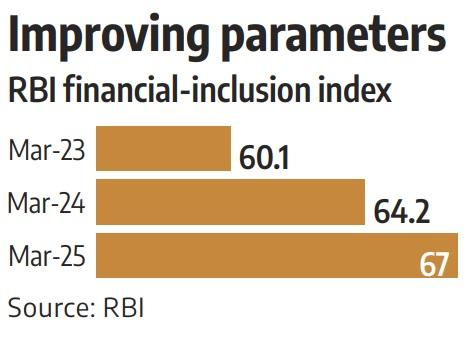
- 24 Jul 2025
In News:
The Reserve Bank of India’s Financial Inclusion Index (FI-Index) saw a 4.3% rise in FY2024-25, climbing from 64.2 in March 2024 to 67 in March 2025. This growth signals India’s ongoing success in expanding access to financial services, particularly in underserved regions, and enhancing the depth and quality of financial inclusion.
Understanding Financial Inclusion
- Financial inclusion refers to ensuring that individuals and businesses have accessible, affordable, and appropriate financial services such as banking, insurance, pensions, and investments. These services should be delivered responsibly and sustainably, supporting long-term economic empowerment.
What is the Financial Inclusion Index (FI-Index)?
- Developed by the RBI, the FI-Index offers a comprehensive measure of financial inclusion in India. It was formulated in consultation with the government and relevant financial sector regulators and captures progress across diverse financial domains—including banking, insurance, postal services, investments, and pensions.
- The Index is expressed as a single score between 0 and 100, where 0 denotes complete exclusion and 100 indicates full financial inclusion.
Components of the FI-Index
- Access (35% weight): Availability of financial services to the public.
- Usage (45% weight): Frequency and extent of usage of financial services.
- Quality (20% weight): Incorporates factors such as financial literacy, consumer protection, and equality in service delivery.
Key Insights from FY2024–25
- The FI-Index rose to 67 in March 2025, indicating broader and deeper financial engagement.
- All three sub-indices—access, usage, and quality—showed improvement.
- Notably, the rise was primarily driven by enhanced usage and service quality, reflecting the success of financial literacy campaigns and improved consumer trust in financial systems.
Importance of Financial Inclusion
Financial inclusion is not just an economic tool—it is a developmental imperative. It:
- Fuels entrepreneurship and employment generation.
- Advances gender empowerment, especially among women-led households.
- Helps in poverty alleviation and the resilience of vulnerable groups against financial and climate-related shocks.
- Supports at least seven of the United Nations Sustainable Development Goals (SDGs), including reducing inequalities and promoting inclusive economic growth.
Major Government Initiatives Driving Financial Inclusion
India's focused efforts have resulted in widespread access to formal financial services:
- Pradhan Mantri Jan Dhan Yojana (PMJDY): Over 54.58 crore bank accounts opened; deposits crossed ?2.46 lakh crore by January 2025.
- Atal Pension Yojana (APY): Enrolments surged to 7.33 crore, with 89.95 lakh new subscribers in FY25 alone.
- Pradhan Mantri Jeevan Jyoti Bima Yojana (PMJJBY): Covered 22.52 crore people, disbursing over ?17,600 crore for 8.8 lakh claims.
- Pradhan Mantri Suraksha Bima Yojana (PMSBY): Provided insurance to 49.12 crore individuals, settling claims worth ?2,994.75 crore.
- Pradhan Mantri Mudra Yojana (PMMY): Sanctioned loans worth ?32.36 lakh crore across 51.41 crore accounts; 68% to women and 50% to SC/ST/OBC beneficiaries.
- Stand-Up India Scheme: Loans worth ?53,609 crore sanctioned to 2.36 lakh entrepreneurs, promoting SC/ST and women entrepreneurship.
MiG-21 Fighter Jets
- 24 Jul 2025
In News:
- The Indian Air Force (IAF) is set to retire its final two squadrons of the iconic MiG-21 Bison fighter jets in September 2025, marking the end of an era that spanned over six decades.
- First inducted in 1963, the MiG-21 played a pivotal role in shaping India's aerial combat capabilities and remains a symbol of India's early steps toward defence self-reliance.
MiG-21: An Overview
- Origin: Designed by the Mikoyan-Gurevich Design Bureau of the Soviet Union in the 1950s.
- Type: Single-engine, supersonic jet fighter.
- Speed: Capable of speeds over Mach 2.0, making it one of the fastest jets of its time.
- Induction in India: Entered IAF service in 1963; licensed production began in the 1960s by Hindustan Aeronautics Limited (HAL).
- Significance: India’s first combat aircraft of non-Western origin and a key asset for air superiority during the Cold War and beyond.
Operational Legacy
The MiG-21 became the backbone of the IAF from the 1970s until the early 2000s, remaining in service even after the induction of more advanced aircraft like the Su-30MKI.
Wars and Combat Contributions
- 1965 & 1971 Indo-Pak Wars: Played a crucial role in establishing air superiority.
- During the 1971 war, MiG-21s conducted multiple successful bombing missions, including attacks on Pakistani airbases, contributing significantly to India’s decisive victory and the creation of Bangladesh.
- The aircraft famously outmatched Pakistan’s F-104 Starfighters in dogfights.
Strengths
- All-weather operations capability.
- Versatility in roles: air-to-air combat, ground attacks, and reconnaissance.
- Compatibility with a variety of air-to-ground and air-to-air weapons.
Limitations and Controversy
Despite its legendary status, the MiG-21's later years were marked by increasing technical limitations and a poor safety record:
- Nicknamed "Flying Coffin" due to over 400 crashes since the 1970s.
- Resulted in the deaths of over 200 pilots and 50 civilians.
- Upgraded variants like the MiG-21 Bison included radar and avionics improvements but could not overcome structural and safety limitations.
- Retirement was delayed multiple times due to shortages in the IAF’s squadron strength.
Retirement and Replacement
- The last two MiG-21 Bison squadrons will be phased out by September 2025.
- India had produced over 600 MiG-21s under license.
- Replacement underway with indigenously developed Tejas Mk-1A fighter jets, part of India’s push for self-reliance under Atmanirbhar Bharat.
- The IAF currently operates 29 squadrons—well below the sanctioned strength of 42.5 squadrons.
Fungus-Resistant Pineapple

- 24 Jul 2025
In News:
- Pineapple (Ananas comosus L. Merr.), the most economically significant fruit of the Bromeliaceae family, plays a crucial role in nutrition and agriculture across tropical regions.
- In India, pineapple cultivation contributes significantly to rural livelihoods, particularly in northeastern and southern states. However, the productivity of this high-value fruit is severely impacted by Fusariosis, a destructive fungal disease caused by Fusarium moniliforme.
- A recent breakthrough by Indian scientists promises a potential game-changer in combating this challenge using indigenous genetic innovation.
Fusariosis
- Fusariosis is a devastating fungal infection that warps the stem, blackens the leaves, and rots the fruit internally, leading to heavy crop losses.
- Traditional breeding methods have struggled to provide effective resistance due to the rapid evolution of fungal pathogens. For farmers, this translates into unreliable harvests and financial instability.
The Biotechnological Solution: AcSERK3 Gene Overexpression
Researchers from the Bose Institute, an autonomous body under the Department of Science and Technology (DST), have successfully identified and overexpressed a gene in pineapple that significantly enhances resistance to Fusariosis.
- The gene, AcSERK3 (Somatic Embryogenesis Receptor Kinase 3), is part of the pineapple’s natural genome.
- It is known to regulate somatic embryogenesis and strengthen plant responses to biotic and abiotic stress.
- By genetically overexpressing this gene in pineapple plants, the researchers were able to trigger enhanced internal defence mechanisms.
- The transgenic lines exhibited increased production of stress-associated metabolites and antioxidant enzyme activity, enabling them to survive fungal attacks that severely damaged wild-type plants.
This is the first documented instance of overexpression of an indigenous pineapple gene to impart fungal disease tolerance while simultaneously improving regenerative capacity.
Significance of the Research
- The study, published in In Vitro Cellular & Developmental Biology – Plants, lays the foundation for developing multi-fungal tolerant pineapple varieties.
- These genetically enhanced lines are not dependent on foreign genes, thereby addressing biosafety concerns.
- Field trials, if successful, could lead to the commercial deployment of these varieties using conventional propagation methods like slips and suckers.
- This offers a sustainable, farmer-friendly solution, especially for smallholder pineapple growers in India.
Pineapple Cultivation in India: Key Facts
- Climatic Conditions: Grows well in 15–30°C temperature range and 600–2500 mm annual rainfall (optimum: 1000–1500 mm).
- Soil: Requires well-drained soils; intolerant to waterlogging.
- Tolerant to Drought: Possesses water-storing tissues making it suitable for rainfed cultivation.
- Cultivation Pattern: Can be grown as a monocrop or intercropped with coconut.
- Major Producing States: Assam, Meghalaya, Tripura, Manipur, West Bengal, Kerala, Karnataka, and Goa.
- Global Producers: Thailand, Philippines, Brazil, China, Nigeria, Mexico, Indonesia, Colombia, and the USA.
Stablecoins
- 24 Jul 2025
In News:
In the evolving landscape of digital finance, stablecoins have emerged as a promising innovation. Unlike volatile cryptocurrencies such as Bitcoin, stablecoins are designed to maintain a consistent value by pegging their worth to stable assets like fiat currencies or commodities. Recent legislative and technological developments, particularly in the United States, indicate growing global interest in integrating stablecoins into everyday financial systems.
What are Stablecoins?
Stablecoins are a type of cryptocurrency whose value is anchored to an external asset, commonly a fiat currency like the US dollar, or commodities such as gold. This pegging mechanism aims to minimize price volatility, making them more suitable for routine transactions.
There are three primary categories of stablecoins:
- Fiat-collateralized: Backed by actual reserves of fiat currency.
- Crypto-collateralized: Secured using other cryptocurrencies as collateral.
- Algorithmic (non-collateralized): Use smart contracts to automatically manage the coin’s supply based on demand.
Although designed for stability, these digital assets still carry some risks, especially if reserve management is opaque or unregulated.
Technological Foundation
Stablecoins, like other cryptocurrencies, are built on blockchain technology—a decentralized, distributed ledger system that records transactions in a secure, transparent manner. Blockchains operate through consensus mechanisms without needing a central authority, making stablecoins capable of direct peer-to-peer transactions without traditional banking intermediaries.
Recent Policy Development: The GENIUS Act
In a landmark move, the GENIUS Act (Generating Emergency National Income Using Stablecoins) was recently signed into law by the US President. It provides a regulatory framework specifically for US dollar-pegged stablecoins like USDC (by Circle) and USDT (by Tether). This legislative support is expected to accelerate the mainstream adoption of stablecoins, especially in cross-border payments.
Applications of Stablecoins
- Remittances and Cross-Border Transfers:
- Traditional remittance services like Western Union or MoneyGram charge high fees and delays.
- Stablecoins offer instant, low-cost transactions, benefiting especially those in countries facing hyperinflation or capital controls.
- Companies can also pay overseas workers in stablecoins, bypassing complex financial systems and exchange rate risks.
- E-Commerce and Retail:
- Online merchants can reduce reliance on credit card networks, which collected over $187 billion in fees in the US in 2023 alone.
- Stablecoins eliminate intermediaries, reducing transaction fees and improving profit margins.
- Enterprise and Supply Chain Payments:
- Businesses can benefit from faster and cheaper cross-border payments.
- Chinese conglomerate JD.com suggests stablecoins could cut transaction costs by 90% and reduce settlement time from days to seconds.
- Custom Stablecoins by Corporations:
- Giants like Amazon, Walmart, and JD.com are exploring the issuance of proprietary stablecoins to support in-house payment systems, customer loyalty programs, and even financial services.
- This could potentially shift customer deposits away from traditional banks, affecting their lending capacity.
- Integration with Artificial Intelligence: Emerging AI agents may autonomously execute and manage stablecoin-based transactions, particularly in business-to-business ecosystems, improving operational efficiency.
Opportunities and Challenges
Advantages:
- Faster, cheaper international payments
- Improved financial inclusion
- Enhanced efficiency in e-commerce and global business operations
Concerns:
- Regulatory uncertainty, especially across jurisdictions
- Security risks, including fraud and hacking
- Potential disruption to traditional banking systems
SASCI Scheme
- 23 Jul 2025
In News:
The Ministry of Tourism has issued operational guidelines for the SASCI Scheme – Special Assistance to States for Capital Investment – Development of Iconic Tourist Centres to Global Scale – aiming to comprehensively upgrade iconic tourist destinations across India.
About the SASCI Scheme
- Objective: To develop iconic tourist centres into world-class destinations, ensuring global branding and promotion, and enhancing the overall tourist experience.
- Ministry in Charge: Ministry of Tourism, Government of India.
- Nature of Assistance: Central Government provides financial support to State Governments for selected tourism projects under capital investment mode.
Key Features of the Scheme
- Integrated Development:
- Creation of end-to-end tourist experiences, including infrastructure, amenities, and accessibility.
- Strengthening all points of the tourist value chain – from entry to exit.
- Proposal-Based Implementation:
- Projects are selected based on proposals submitted by State Governments.
- These proposals are evaluated based on several prescribed parameters.
- Evaluation Parameters Include:
- Connectivity to the site
- Existing tourism ecosystem
- Carrying capacity of the site
- Sustainability measures (environmental, social)
- Operation and maintenance mechanisms
- Project impact and value creation
- Tourism marketing strategies
- Design & Sustainability:
- Projects to leverage high-quality expertise for planning, design, and execution.
- Emphasis on sustainable development and maintenance of tourist centres.
Implementation Timeline & Funding
- Timeline:
- Projects to be completed within a maximum of 2 years from sanction.
- Deadline for Central funding: 31st March 2026.
- Execution Responsibility: Entirely with the respective State Governments under the guidance of the Ministry of Tourism.
Promotional Strategy
- The Ministry promotes these destinations through:
- International and domestic events
- Social media campaigns
- Dedicated tourism websites
- Other promotional and branding platforms
Ambrosia Beetle
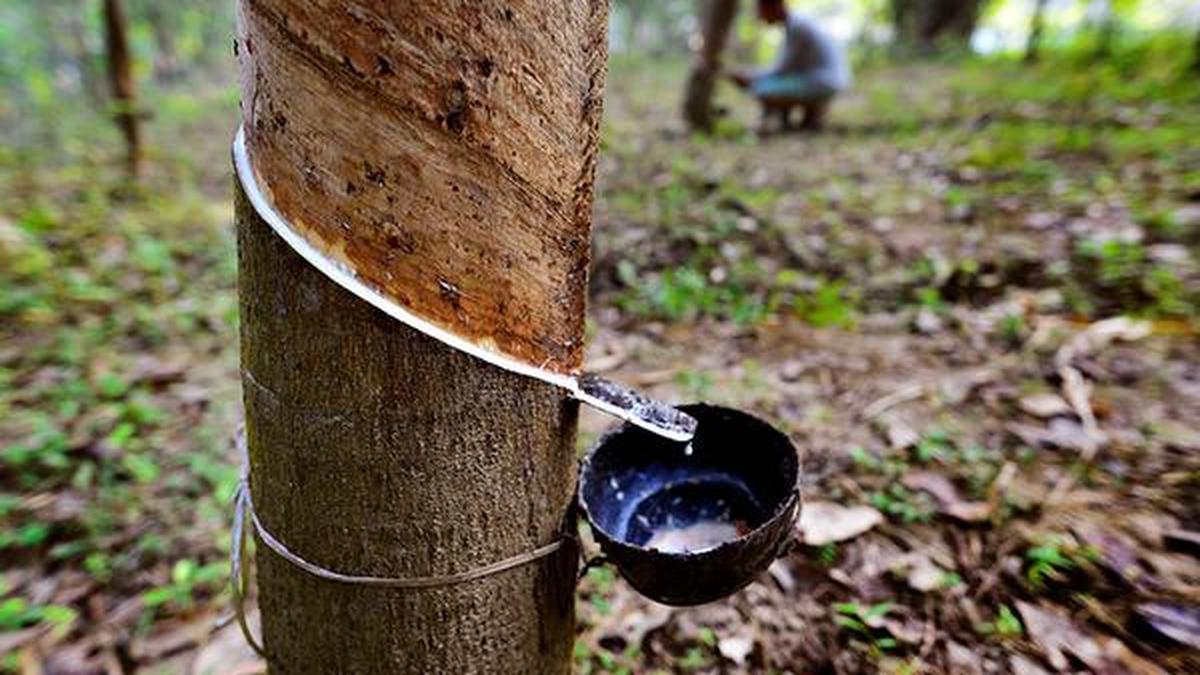
- 23 Jul 2025
In News:
Rubber plantations in Kerala, the heart of India’s natural rubber production, are under significant threat due to an invasive insect-fungal association. A mutualistic relationship between the ambrosia beetle (Euplatypus parallelus) and two fungal species (Fusarium ambrosia and Fusarium solani) has caused widespread tree damage, including leaf fall, trunk drying, and reduction in latex yield. This development poses a serious risk to India's rubber economy, biodiversity, and public health.
Key Highlights:
Ambrosia Beetle
- Origin: Native to Central and South America.
- First reported in India: In 2012, from cashew trees in Ponda, Goa.
- Current host: Rubber trees in Kerala, especially in Irrity-Kannur region.
Fungal Partners
- Fusarium ambrosia
- Fusarium solani — first time reported in association with adult ambrosia beetles in India.
Mutualistic Relationship
- The beetles do not feed on wood, but carry fungi into tunnels (galleries) bored into the tree bark.
- The fungi feed on wood, releasing enzymes that degrade plant tissue.
- Beetles and their larvae then feed on the nutrient-rich fungal mycelia.
- This association causes systemic infections in trees, often leading to their death.
Impact on Rubber Trees
- Weakens wood structure
- Causes severe leaf fall and drying of trunks
- Blocks xylem vessels, reducing water transport
- Leads to reduced latex production
- Long recovery time and high tree mortality
- The infection is hard to treat, as fungi lodge deep in plant tissues where fungicides and insecticides are ineffective.
Wider Implications
Scientific Concerns
- Fungi like Fusarium solani can evolve to associate with other beetles, expanding the range of infection to cashew, coconut, coffee, mango, and teak.
- These fungi can spread through soil or be carried by insect vectors, making containment difficult.
Health Hazards
- Fusarium species are opportunistic pathogens in humans.
- Workers in plantations may be exposed to these fungi, especially those with compromised immunity.
India’s Rubber Sector at Risk
- India is the 6th largest producer of rubber globally.
- Kerala accounts for 90% of national production and 72% of cultivation area.
- The economic stakes are high, as the beetle-fungi threat endangers not only latex yields but also the livelihoods of thousands of smallholder farmers.
Response Measures and Strategies
Current Management Practices
- Use of antifungal agents
- Pruning or burning infected parts
- Installation of ambrosia beetle traps
- Chipping infected wood to prevent spread
Challenges
- No mycangia (fungal sacs) found in beetles in India — raises questions on fungal transmission mechanisms.
- Soil- and insect-mediated spread of fungi makes conventional phytosanitary measures ineffective for broadleaf trees like rubber.
Suggested Solutions
- Genetically modified (GM) rubber plants to resist fungal infection (debated).
- Use of antagonistic fungi or microbial consortia inside plants to outcompete pathogens.
- Location-specific strategies based on geography and host tree characteristics.
- Greater collaboration between researchers and policymakers to monitor and contain the threat.
Winter Fog Experiment (WiFEX)
- 23 Jul 2025
In News:
The Winter Fog Experiment (WiFEX) has completed ten successful years since its launch in 2015. Initiated at the Indira Gandhi International Airport (IGIA), New Delhi, WiFEX has emerged as a pioneering long-term scientific initiative aimed at understanding and mitigating the impact of dense winter fog over the Indo-Gangetic Plain (IGP) — one of the most fog-prone regions in the world.
What is WiFEX?
- Launched in Winter 2015 at IGIA, New Delhi.
- Led by the Indian Institute of Tropical Meteorology (IITM) under the Ministry of Earth Sciences (MoES).
- Supported by:
- India Meteorological Department (IMD)
- National Centre for Medium Range Weather Forecasting (NCMRWF).
- One of the world’s few open-field long-term experiments exclusively dedicated to studying winter fog.
Objectives of WiFEX
- To develop accurate now-casting (up to 6 hours) and forecasting systems for fog events over North India.
- To reduce the adverse impact of fog on:
- Aviation (flight delays, diversions, safety).
- Surface transport (road and rail accidents).
- Economy and public safety.
How it was Conducted
Observational Framework
WiFEX deployed cutting-edge scientific equipment, including:
- Micrometeorology towers
- Ceilometers
- High-frequency sensors
- Radiometers
- Wind profilers
These were installed at multiple locations including:
- IGIA, Delhi
- Jewar Airport, Noida
- Hisar, Haryana
Key Parameters Studied
- Atmospheric temperature stratification
- Relative humidity and soil heat flux
- Wind speed and turbulence
- Aerosol concentration
- Urban heat island effects
- Land-use changes
This comprehensive data helped scientists decode how dense fog forms, persists, and disperses.
Major Achievements of WiFEX
High-Resolution Forecasting Model
- A 3-km resolution probabilistic fog prediction model was developed.
- Achieved over 85% accuracy in forecasting very dense fog (visibility <200 meters).
- Provides insights on:
- Onset and dissipation timing
- Fog density
- Duration of fog events
Operational Impact
- Significantly reduced flight diversions and delays at IGIA.
- Enhanced airport safety and efficiency in fog conditions.
- Helped airlines and transport authorities activate timely contingency plans.
Scientific Contributions
- Showcased how air pollution, aerosols, urbanization, and land-use changes influence fog behavior.
- Facilitated improvements in early warning systems for North India.
- Informed urban planning and air quality policies for fog-prone areas.
United Nations Educational, Scientific and Cultural Organization (UNESCO)
- 23 Jul 2025
In News:
In a significant development, the United States has announced its decision to withdraw from UNESCO (United Nations Educational, Scientific and Cultural Organization) by December 2026, citing what it perceives as the agency’s anti-Israel bias and its recognition of the State of Palestine as a full member. This marks the third withdrawal of the U.S. from UNESCO and the second under President Donald Trump’s leadership, having previously exited in 2018 and rejoined in 2023 under the Biden administration.
Reasons for U.S. Withdrawal
According to the U.S. State Department, the decision stems from:
- UNESCO’s admission of the State of Palestine as a member state, which contradicts official U.S. policy.
- Allegations that UNESCO promotes divisive social and cultural causes.
- Concerns about the proliferation of anti-Israel rhetoric within the organization.
About UNESCO
Founding and Mandate
- Founded: 16 November 1945 (Constitution in force from 1946).
- Headquarters: Paris, France.
- Parent Body: United Nations Economic and Social Council (ECOSOC).
- Membership: 194 member states and 12 associate members.
- Origin: Born out of post–World War II efforts to foster peace through education, science, and culture.
Objectives
UNESCO aims to build global peace and security by:
- Promoting international cooperation in education, science, culture, and communication.
- Supporting literacy, educational access, and free universal education.
- Acting as a clearinghouse of knowledge, especially in global South nations.
Focus Areas
UNESCO operates in five major sectors:
- Education
- Natural Sciences
- Social and Human Sciences
- Culture
- Communication and Information
Key Functions and Initiatives
Flagship Initiatives
- World Heritage Convention (1972): Protects cultural and natural sites of outstanding universal value.
- Man and the Biosphere Programme (1971): Promotes sustainable development through biosphere reserves.
- Convention for Safeguarding Intangible Cultural Heritage (2003): Preserves oral traditions, performing arts, and rituals.
- Global Education Coalition (2020): Formed during COVID-19 to ensure education continuity.
- Recommendation on the Ethics of Artificial Intelligence (2021): Sets global standards for ethical AI development.
Important Publications
- Global Education Monitoring Report
- World Water Development Report
- World Trends in Freedom of Expression and Media Development
Strategic Importance of UNESCO
- Acts as a platform for intercultural dialogue and peacebuilding.
- Enhances scientific cooperation for issues like climate change and disaster preparedness.
- Supports freedom of expression and combats misinformation globally.
- Promotes equity in global education and digital access.
- Plays a key role in setting ethical standards in science and technology.
U.S. and UNESCO: A Tumultuous Relationship
- The U.S. has historically had a strained relationship with UNESCO:
- 1984: First withdrawal under Ronald Reagan, citing mismanagement and politicization.
- 2002: Rejoined under George W. Bush.
- 2011: Stopped funding after UNESCO admitted Palestine as a member.
- 2018: Withdrew under Donald Trump.
- 2023: Rejoined under Joe Biden.
- 2026: Set to withdraw again.
Implications of U.S. Withdrawal
- Financial Impact: The U.S. has historically contributed around 22% of UNESCO’s budget.
- Geopolitical Signal: Reflects a broader American skepticism towards multilateral institutions.
- Operational Effect: May hamper UNESCO’s work, especially in politically sensitive or conflict regions.
- Diplomatic Fallout: Could weaken the U.S.'s soft power and global cultural influence.
Resignation of Vice-President of India
- 23 Jul 2025
In News:
Vice-President of India, Jagdeep Dhankhar, resigned from office on health grounds on July 2025, invoking Article 67(a) of the Constitution. This created a rare mid-term vacancy in the Vice-President’s office, necessitating immediate action by the Election Commission of India (ECI) to conduct fresh elections.
Constitutional Provisions and Duties of the Vice-President
Articles Related to Vice-President:
- Article 63: Provides for the post of Vice-President.
- Article 64: Vice-President acts as ex-officio Chairman of Rajya Sabha.
- Article 65: Vice-President acts as President in case of a vacancy in the office of the President.
- Article 66: Deals with election of the Vice-President.
- Article 67(a): Vice-President may resign by writing under his hand addressed to the President.
- Article 68: Covers election in case of a vacancy and mandates that it be filled as soon as possible.
- Article 324: Vests the Election Commission of India (ECI) with the authority to conduct the election.
Resignation of the Vice-President
Key Facts:
- Jagdeep Dhankhar, 74, resigned before completing his 5-year term (2022–2027).
- The resignation was addressed to the President of India as per Article 67(a).
- No formal acceptance is necessary; it becomes effective upon submission.
- Constitutionally, no method of succession is provided other than fresh elections.
Historical Precedents:
- V.V. Giri (1969): Resigned to contest Presidential election.
- Bhairon Singh Shekhawat (2007): Resigned after losing Presidential race.
- Jagdeep Dhankhar (2025): Resigned for health reasons.
Election Process for Vice-President
Electoral College:
- Comprises both elected and nominated members of the Lok Sabha and Rajya Sabha.
- Unlike the Presidential election, MLAs are not part of the Vice-Presidential electoral college.
Voting System:
- Election is held by proportional representation through single transferable vote (STV).
- Voting is by secret ballot.
- All votes carry equal value, unlike in Presidential elections.
Nomination Procedure:
- Requires at least 20 proposers and 20 seconders, all of whom must be MPs.
- Security deposit: ?15,000.
- Nomination papers must be submitted between 11 a.m. and 3 p.m. on appointed days.
Returning Officer:
- Typically, the Secretary-General of the Lok Sabha or Rajya Sabha, appointed by rotation.
- Two Assistant Returning Officers from Parliament Secretariat also assist.
Eligibility Criteria for Vice-President
A candidate must:
- Be a citizen of India.
- Have completed 35 years of age.
- Be qualified for election to the Rajya Sabha.
- Not hold any office of profit under the Union or State Government or any subordinate authority.
If an MP is elected Vice-President, they vacate their parliamentary seat on assuming office.
Dispute Resolution
- Supreme Court exclusively handles disputes related to Vice-Presidential elections.
- Cases are heard by a five-judge bench, and its decision is final.
Implications of Vacancy
- The post of Vice-President cannot remain vacant, even temporarily.
- In the interim, the Deputy Chairman of the Rajya Sabha presides over its proceedings.
- The ECI is mandated to conduct elections immediately after such a vacancy occurs, although no fixed constitutional timeline is prescribed for Vice-Presidential elections (unlike Presidential elections which must occur within six months).
Tenure and Re-election
- The Vice-President holds office for five years but continues until a successor is elected and takes office.
- There is no bar on re-election to the office.
Meri Panchayat App
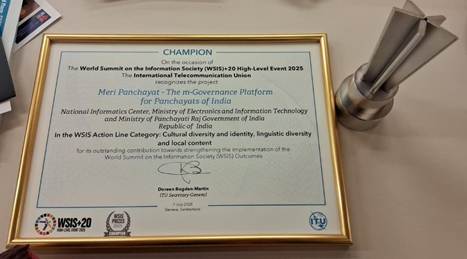
- 22 Jul 2025
In News:
India’s digital governance model received global recognition as the Meri Panchayat mobile application won the prestigious WSIS Prizes 2025 Champion Award under the category Cultural Diversity and Identity, Linguistic Diversity and Local Content. The award was presented during the WSIS+20 High-Level Event 2025 held in Geneva, Switzerland.
Key Highlights:
- The award was conferred by the International Telecommunication Union (ITU) as part of the World Summit on the Information Society (WSIS) initiative.
- The WSIS+20 event commemorated 20 years of WSIS, providing a platform to assess digital progress, address new challenges, and promote inclusive information societies.
- The event was co-hosted by ITU and the Swiss Confederation, and co-organized by UNESCO, UNDP, and UNCTAD.
About the “Meri Panchayat” App:
- A flagship m-Governance platform developed by the Ministry of Panchayati Raj in collaboration with National Informatics Centre (NIC) under the Ministry of Electronics and IT (MeitY).
- Designed to empower 2.65 lakh Gram Panchayats, the app caters to over 950 million rural residents and 25 lakh elected Panchayat representatives.
Key Features:
- Real-time Access: Budgets, receipts, payments, and Panchayat-level development plans.
- Transparency & Accountability: Social audit tools, geo-tagged fund utilization, and grievance redressal mechanisms.
- Participatory Governance: Enables citizens to propose projects, rate completed works, and view Gram Sabha decisions.
- Multilingual Support: Interface available in 12+ Indian languages, enhancing local inclusivity.
- Weather and Civic Info: Gram Panchayat-level weather forecasts, civic services, and infrastructure details.
Significance:
- The app strengthens participatory democracy by digitally integrating rural citizens into governance.
- It aims to bridge the digital divide and promote linguistic and cultural inclusivity in rural India.
- Recognized globally for promoting citizen-centric governance and local content diversity.
Bima Sakhi Yojana
- 22 Jul 2025
In News:
Life Insurance Corporation of India (LIC) has signed a Memorandum of Understanding (MoU) with the Department of Rural Development, Ministry of Rural Development, to implement the Bima Sakhi Yojana in rural areas. The agreement was formalized during the ‘Anubhuti’ national conclave on financial inclusion held in Goa.
About Bima Sakhi Yojana:
- Implementing Body: Life Insurance Corporation of India (LIC) in collaboration with the Union Ministry of Rural Development.
- Objective: To promote financial inclusion and women empowerment by facilitating their participation in the insurance distribution sector.
- Target Group: Rural women aged 18–70 years, with at least a Class 10 qualification.
Key Features:
- Stipendiary LIC Agency Scheme:
- Women are inducted as LIC agents with all associated privileges.
- The scheme offers a monthly stipend for the initial three agency years:
- ?7,000 in the first year
- ?6,000 in the second year
- ?5,000 in the third year (Subject to performance and terms and conditions)
- Commission Benefits:
- In addition to stipends, Bima Sakhis are eligible for sales commissions.
- A commission of ?48,000 (excluding bonuses) is provided in the first year for qualifying agents.
- Training & Career Path:
- Selected candidates undergo specialized training to build capacity in insurance awareness and financial literacy.
- Post-training, they function as LIC agents.
- Graduates among them may be eligible to become LIC Development Officers.
- Scale of Implementation: The scheme aims to appoint 2 lakh Bima Sakhis over a period of three years, with focus on enhancing rural outreach and insurance penetration.
Eligibility Criteria:
- Age Limit: 18 to 70 years
- Minimum Education: Must have passed Class X
- Preference: Women from rural areas are prioritized
Ineligibility Conditions:
- Women who are:
- Related to existing LIC agents or employees (including spouse, children, siblings, parents, and in-laws)
- Retired LIC employees or ex-agents
- Currently working as LIC agents
Significance:
- Promotes gender empowerment and financial literacy in rural India.
- Part of government’s push for inclusive financial growth through public-private partnerships.
- Illustrates convergence between LIC’s social responsibility and government rural development goals.
Hatti Tribe
- 22 Jul 2025
In News:
Recently, two brothers from the Hatti tribe in the Trans-Giri region of Sirmaur district, Himachal Pradesh, married the same woman under the traditional custom of polyandry. The wedding, held in Shillai village, was conducted openly and witnessed by hundreds, reviving attention to this rare tribal practice.
About the Hatti Tribe
- The Hatti community derives its name from the traditional occupation of selling agricultural produce, meat, and wool in local markets called haats.
- They reside primarily in the Himachal–Uttarakhand border region, especially in the basins of the Giri and Tons rivers, both tributaries of the Yamuna.
- The Hattis are divided into two major groups:
- One in Trans-Giri, Sirmaur district (Himachal Pradesh)
- Another in Jaunsar-Bawar (Uttarakhand)
- They maintain similar cultural practices, and intermarriage between these clans is common.
- The community follows a traditional council system called ‘Khumbli’ for resolving social issues.
- As of 2023, the Hatti tribe in Himachal Pradesh was granted Scheduled Tribe (ST) status, while Jaunsar-Bawar in Uttarakhand received tribal status in 1967.
- Their economy is largely agrarian, with a focus on cash crops due to favorable climatic conditions.
The Tradition of Polyandry ("Jajda")
- Polyandry in the Hatti community is locally called “Jajda” and was historically practiced to prevent division of ancestral land.
- The ritual includes a marriage procession of the bride to the groom’s village and a ceremony called “Seenj”.
- Local priests chant mantras in the native language and conclude the ceremony with blessings and offerings like jaggery.
- This practice has declined in recent decades due to increasing literacy among women, social modernization, and economic shifts.
Legal and Social Acceptance
- Polyandrous marriages are informally recognized under Himachal Pradesh revenue laws, where the practice is referred to as “Jodidara”.
- Though rare, such marriages continue to be socially accepted in some remote villages of Trans-Giri, Kinnaur, and Jaunsar-Bawar.
Demographics
- As per the 2011 Census, the Hatti population was around 2.5 lakh, and estimates now suggest about 3 lakh people across 450 villages in the Trans-Giri region alone.
Cultural and Practical Rationale
According to Hatti elders and community leaders:
- Land Preservation: Prevents fragmentation of ancestral property.
- Joint Family Bonding: Promotes unity and mutual understanding among brothers.
- Labor Sharing: Ensures adequate manpower to manage scattered agricultural lands in hilly terrain.
- Security: A larger family offers greater social and economic protection in tribal settings.
Cy-TB Test
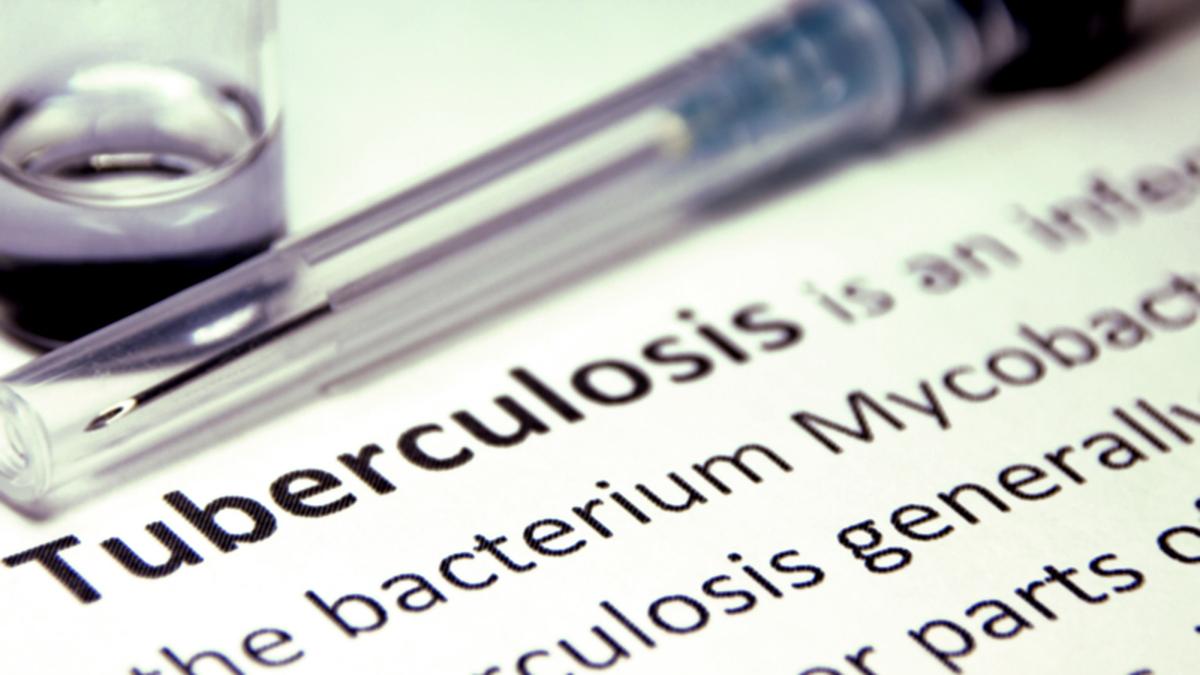
- 22 Jul 2025
In News:
Kerala has introduced Cy-TB, a new intradermal diagnostic tool, under the National TB Elimination Programme (NTEP) to identify and manage latent tuberculosis infections (LTBI).
What is the Cy-TB Test?
- Cy-TB is a third-generation skin test approved by the Central TB Division, Government of India.
- It involves the intradermal injection of 0.1 ml of Mycobacterium tuberculosis-specific antigens (ESAT-6 and CFP-10) into the inner forearm.
- If an individual develops a raised area of 5 mm or more within 48–72 hours, it indicates TB infection.
- The test is:
- Highly specific, accurate, and user-friendly
- Administered by a trained nurse
- Requires follow-up for reading the result
- A cost-effective alternative to the Interferon Gamma Release Assay (IGRA), which requires lab support
TB Infection vs. Active TB Disease
- TB infection means that a person harbours Mycobacterium tuberculosis bacteria in a dormant form and shows no symptoms.
- These individuals are not contagious.
- If left untreated, about 5–10% may progress to active TB when their immune system weakens.
Why Focus on Latent TB?
Kerala is prioritising treatment of latent TB infections as part of its last-mile strategy in TB elimination. Despite a 40% reduction in TB transmission over six years, the state faces challenges due to subclinical (asymptomatic) TB and a high burden of comorbidities such as diabetes, chronic kidney disease, and alcohol abuse.
Key Study in Thiruvananthapuram (2022)
- A cross-sectional community study found that 20.5% of adults had TB infection.
- Prevalence increased with age, from 11.5% (18–35 years) to 30.3% (above 58 years).
- State-level estimates suggest around 22% of Kerala’s general population is latently infected.
Burden of Tuberculosis (India & Global)
According to the WHO Global Tuberculosis Report 2024:
- India accounts for 26% of global TB cases – the highest worldwide.
- TB continues to be the leading infectious disease killer.
- Each year, around 10 million people fall ill globally, and 1.5 million die of TB.
- TB is the top cause of death among people with HIV and a major driver of antimicrobial resistance (AMR).
Implementation of Cy-TB in Kerala
- The Cy-TB test will be used in district TB centres, taluk hospitals, dialysis centres, and some block-level facilities.
- It will also be used to screen residents of old age homes, especially where pulmonary TB cases have emerged.
- The test is also available in major private hospitals.
High-Risk Groups for Preventive Therapy
Only high-risk individuals who test positive for latent TB are recommended for TB preventive therapy (TPT). These include:
- People on dialysis or awaiting transplants
- Patients on immunosuppressive or anti-TNF therapy
- Individuals with silicosis
- Healthcare workers exposed to TB
- Elderly in institutional settings
Preventive TB Treatment Regimens
- 3HP: 3 months of weekly doses of Isoniazid and Rifapentine
- 6H: 6 months of daily Isoniazid. These regimens use fewer drugs and are shorter than active TB treatment protocols.
Guryul Ravine Fossil Site
- 22 Jul 2025
In News:
The Geological Survey of India (GSI) has raised an alarm over a serious threat to the Guryul Ravine fossil site located in Khonmoh, on the outskirts of Srinagar, Jammu & Kashmir. The site holds immense geological significance and is facing the risk of degradation due to human activity.
About the Site
The Guryul Ravine is situated near Khonmoh in Jammu & Kashmir, close to the Dachigam National Park. Geologically, the area is part of the Vihi district. It falls within the ecologically sensitive Khonmoh Conservation Reserve.
- This fossil site is globally significant because it contains sedimentary layers that preserve evidence of the Permian–Triassic mass extinction event. These geological layers date back around 260 million years and represent one of the most catastrophic periods in Earth’s biological history.
- Remarkably, the site also shows signs of what is believed to be the world’s earliest recorded tsunami, with the imprint still visible in the exposed strata.
Significance of the Permian–Triassic Extinction Event
- Also referred to as the “Great Dying,” the Permian–Triassic extinction event occurred around 251.9 million years ago. It marks a major boundary between the Permian and Triassic geological periods and also separates the Paleozoic and Mesozoic eras.
- This event was the most severe extinction episode in Earth’s history. It led to the loss of nearly 90–95% of marine species and about 70% of terrestrial vertebrate species. The extinction dramatically reshaped life on Earth and paved the way for the rise of dinosaurs in the subsequent Mesozoic era.
Conservation Concerns
- The GSI has warned that this invaluable geo-heritage site is under threat due to encroachment and unregulated activities. It has recommended urgent steps to protect the fossil-rich area to preserve its scientific and educational value.
Allographa effusosoredica
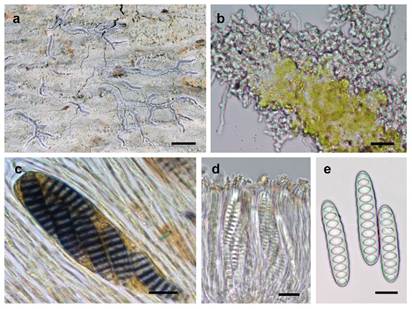
- 20 Jul 2025
In News:
A team of Indian scientists from MACS-Agharkar Research Institute, Pune (under the Department of Science & Technology) has discovered a new species of lichen named Allographa effusosoredica in the Western Ghats, a UNESCO World Heritage Site and biodiversity hotspot. This crustose lichen exhibits effuse soredia and contains norstictic acid, a rare secondary metabolite within its genus.
Scientific and Molecular Significance
- The species was examined through polyphasic taxonomy, integrating:
- Morphological traits
- Chemical profiling
- Molecular sequencing using genetic markers:
- Fungal DNA markers: mtSSU, LSU, RPB2
- Algal symbiont marker: ITS
- The lichen’s photobiont was identified as a species of Trentepohlia, advancing the understanding of tropical algal diversity in lichens.
- Though morphologically similar to Graphis glaucescens, it is phylogenetically closest to Allographa xanthospora.
Symbiosis in Lichens
- Lichens are composite organisms, formed by a symbiotic association between:
- A fungal partner (mycobiont) — provides structure and protection.
- A photosynthetic partner (photobiont), such as green algae or cyanobacteria — produces nutrients via photosynthesis.
- This discovery supports the concept of locally adapted symbiosis, emphasizing co-evolution in tropical ecosystems.
Ecological Importance of Lichens
- Lichens are vital for:
- Soil formation
- Feeding insect populations
- Acting as bioindicators of air quality and ecosystem health.
Conservation and Biodiversity Impact
- Allographa effusosoredica is:
- The 53rd Allographa species reported from India.
- The 22nd species of this genus documented in the Western Ghats.
- The first Indian Allographa species validated using molecular tools.
- The study was supported by the Anusandhan National Research Foundation (ANRF) and contributes to the growing inventory of India’s cryptic biodiversity.
Global Measles Resurgence
- 20 Jul 2025
In News:
Virologists raise alarm over surge in measles cases worldwide.
What is Measles?
- Measles is a highly contagious viral disease caused by the Measles morbillivirus (from the paramyxovirus family).
- It primarily affects children, but any non-immune person (unvaccinated or without immunity) is at risk.
- The virus spreads via airborne transmission—through coughing, sneezing, and respiratory droplets. It can remain in the air or on surfaces for up to 2 hours.
- Infectivity: ~90% of unvaccinated individuals exposed will contract the virus.
Global Surge in Cases (2023–2025)
- The World Health Organization (WHO) and US CDC reported a 30-fold global surge in measles cases from 10,000 in 2022 to 10.3 million in 2023.
- Outbreaks have been recorded in Africa, Europe, Southeast Asia, and the Americas.
- Africa: Nearly half of global outbreaks.
- Europe: 41 of 53 countries reported cases.
- United States: Worst outbreak since 1992 with 1,300+ cases across 40 states, including Texas, Ohio, and California.
- Americas (2025): 11-fold increase in cases due to international travel.
Symptoms and Progression
- Incubation: Symptoms appear 7–14 days after exposure.
- Early signs: High fever, cough, runny nose, conjunctivitis (red, watery eyes), and white spots in the mouth (Koplik spots).
- Rash: Starts on the face and neck, spreads to the entire body, lasting 5–6 days.
- Contagious: 4 days before and after rash onset.
Complications
- Common: Pneumonia, diarrhoea, encephalitis (brain inflammation), deafness.
- Severe:
- 1–3 per 1,000 unvaccinated children may die.
- Can cause blindness, subacute sclerosing panencephalitis (SSPE) (a fatal brain disorder).
- In pregnancy: Can lead to stillbirth or premature delivery.
Vaccination and Prevention
- No specific antiviral treatment exists; only preventive vaccination is effective.
- MMR Vaccine (Measles, Mumps, Rubella):
- Two doses recommended:
- 1st dose: 12–15 months
- 2nd dose: 4–6 years
- During outbreaks or travel: Can be given from 6 months of age.
- Two doses recommended:
- Herd Immunity Threshold: 95% vaccination coverage needed to prevent outbreaks.
- Current US rate: 92.7%, with rising nonmedical exemptions at 3.3%, falling short of safety threshold.
Causes of Resurgence
- Vaccine hesitancy, misinformation, and declining immunisation rates.
- Conflict zones, weak health systems, and interrupted vaccination drives in developing regions.
- Post-COVID travel rebound accelerating transcontinental spread.
Call to Action by Scientists and WHO
- Global Virus Network (GVN) and virologists urge:
- Urgent vaccination of unvaccinated children and vulnerable adults.
- Strengthening public health infrastructure.
- Enhancing outbreak surveillance and public awareness.
- Focused outreach in rural and underserved communities.
Exercise SIMBEX
- 20 Jul 2025
In News:
The Indian Navy is participating in the 32nd edition of the Singapore-India Maritime Bilateral Exercise (SIMBEX) in Singapore in July 2025. It marks one of the longest uninterrupted bilateral naval exercises India has with any country.
What is SIMBEX?
- SIMBEX stands for Singapore-India Maritime Bilateral Exercise
- It is an annual naval exercise conducted between the Indian Navy and the Republic of Singapore Navy (RSN)
- Origin: Initiated in 1994 as Exercise Lion King
- It has evolved into a complex maritime engagement, showcasing interoperability in surface, subsurface, and air operations
Significance
- It supports India’s Vision SAGAR (Security and Growth for All in the Region) and the Act East Policy
- Promotes regional maritime security cooperation and ensures the safety of sea lanes of communication (SLOCs)
- Reinforces commitment to a rules-based international maritime order, especially amidst rising piracy and threats from non-state actors
Indian Navy’s Participation (2025 Edition)
- The Indian naval contingent includes:
- INS Delhi – Guided missile destroyer
- INS Satpura – Stealth frigate
- INS Shakti – Fleet replenishment tanker
- INS Kiltan – Anti-submarine corvette
- These vessels are indigenously designed and equipped with advanced systems for high-seas operations
Strategic Engagement Highlights
- SIMBEX is a critical part of India’s expanding maritime diplomacy in the Indo-Pacific
- The naval exercise is conducted alongside a goodwill visit to Singapore, coinciding with the 60th anniversary of India-Singapore diplomatic ties
- Following Singapore, the Indian Navy’s Eastern Fleet is also scheduled to visit the Philippines and Vietnam
Broader Defence Cooperation with Singapore
In addition to SIMBEX, India and Singapore engage in:
- Exercise Agni Warrior (Army)
- Joint Military Training (JMT) (Air Force)
India also engages with ASEAN through:
- ASEAN-India Maritime Exercise (First held in 2023, co-hosted by Singapore)
- Participation in ASEAN-led forums like:
- ADMM-Plus
- ASEAN Regional Forum
- East Asia Summit
Vision SAGAR & Maritime Security
India’s Vision SAGAR emphasizes:
- Collaborative maritime partnerships
- Combating common maritime threats (e.g., piracy, trafficking, and disasters)
- Securing economic and strategic interests in the Indian Ocean Region (IOR)
Chronic Venous Insufficiency (CVI)
- 20 Jul 2025
In News:
Former U.S. President Donald Trump, aged 79, was recently diagnosed with Chronic Venous Insufficiency (CVI) — a common vascular condition, especially among individuals above 70 years. This brings attention to a condition affecting millions globally.
What is Chronic Venous Insufficiency (CVI)?
CVI is a circulatory disorder where the veins in the legs fail to return blood effectively to the heart. This results in blood pooling in the lower limbs due to damaged or weak vein valves, increasing venous pressure.
- Typically begins in one leg and may progress to both.
- Common symptoms include:
- Leg pain, swelling
- Varicose veins
- Cramps, skin discoloration, or thickening
- In advanced cases: venous ulcers
- In some cases, patients may be asymptomatic in early stages.
Epidemiology
- Affects approximately 1 in 20 adults
- Risk significantly increases with age
- Particularly common among individuals over 70
- People with CVI are about 60% more likely to also have cardiovascular disease compared to those without the condition
Risk Factors and Causes
CVI can result from or be worsened by:
- Obesity and pregnancy
- Family history of vein disorders
- Leg injury, surgery, or prior blood clots
- High blood pressure, smoking
- Lack of physical activity or prolonged sedentary lifestyle
Management and Treatment
Lifestyle Modifications
- Regular physical activity
- Avoid prolonged sitting or standing
- Weight management
- Elevating the legs to aid venous return
Medical Interventions
- Compression therapy: Use of compression stockings or bandages to support vein function
- Medications that enhance venous tone and reduce inflammation
Surgical/Minimally Invasive Procedures
- Endovenous laser ablation
- Vein glue therapy: Seals off malfunctioning veins
- Vein ligation/stripping (less common today due to invasive nature)
These newer techniques often ensure quicker recovery than traditional surgery.
Global Wetland Outlook 2025
- 20 Jul 2025
In News:
The Global Wetland Outlook (GWO) 2025, released by the Ramsar Convention on Wetlands, highlights alarming degradation trends in global wetlands—especially in Africa, Latin America, and the Caribbean—with implications for climate resilience, biodiversity, and socio-economic wellbeing.
What are Wetlands?
A wetland is a land area saturated with water—either permanently or seasonally—and functions as a distinct ecosystem. Wetlands include:
- Inland: Lakes, rivers, swamps, peatlands
- Coastal: Mangroves, tidal flats, coral reefs, estuaries
- Human-made: Rice paddies, reservoirs, wastewater ponds
Key Findings:
- Produced by: Scientific and Technical Review Panel (STRP) of the Ramsar Convention
- Global Wetland Loss: Since 1970, the world has lost 411 million hectares of wetlands—a 22% decline in extent.
- Current loss rate: ~0.52% annually
- Regional Degradation:
- Most severe in Africa, Latin America, and the Caribbean
- Africa’s wetlands are deteriorating faster than they can be restored, especially in South Africa
- Drivers of degradation:
- Africa, Latin America & Caribbean: Urbanisation, industrialisation, infrastructure development
- Europe: Drought
- North America & Oceania: Invasive species
- Economic Valuation:
- Global value of wetlands: $7.98 to $39.01 trillion/year
- Africa’s wetlands (2023): $825.7 billion, vs Asia’s $10.58 trillion
- Restoration Costs vs Conservation:
- Restoration: $1,000 to $70,000 per hectare/year
- Conservation is cheaper and more effective long-term
- Policy Insight: Most wetlands in Least Developed Countries (LDCs) are in poor condition, while those in high-income countries are in better health.
Africa’s Wetlands: A Deepening Crisis
- Millions depend on wetlands for food, water, disaster protection, and climate resilience.
- The Kafue Flats (Zambia) restoration example shows:
- $300,000 investment revived flooding
- Supported biodiversity and over a million people
- Boosted artisanal fisheries worth $30 million annually
- Warning from Ramsar Secretariat: Loss of wetlands is a major barrier to achieving global climate, biodiversity, food, and poverty targets.
India and Wetlands
- India has ~4.6% of its land as wetlands
- Hosts 91 Ramsar Sites – largest in South Asia and third in Asia
- Wetland types: Himalayan high-altitude lakes, Gangetic floodplains, mangroves (e.g., Sundarbans), coastal lagoons
Importance of Wetlands:
|
Function |
Explanation |
|
Biodiversity Hotspots |
Support endangered and endemic species |
|
Water Purification |
Trap pollutants and sediments |
|
Flood Regulation |
Act as natural buffers |
|
Carbon Sequestration |
Slow decomposition stores carbon |
|
Livelihoods |
Sustain agriculture, fisheries, tourism |
Ramsar Convention on Wetlands
- Adopted: 1971, Ramsar, Iran | Came into force: 1975
- India joined: 1982
- Goal: Conservation and wise use of wetlands globally
- Ramsar Site Criteria: Supports endangered species, ≥20,000 waterbirds, or critical fish spawning grounds
Key Framework: Kunming-Montreal Global Biodiversity Framework (GBF)
- Adopted in 2022 (COP15 to Convention on Biological Diversity)
- Dubbed “Paris Agreement for Nature”
- Targets:
- Halve invasive species spread
- Cut harmful subsidies by $500 billion/year
- 30x30 Target: Protect 30% of land + marine areas by 2030
- Restore 30% of degraded ecosystems by 2030
Recommendations from GWO 2025
- Increase Wetland Financing:
- Incorporate wetlands in KM-GBF finance targets
- Mobilise private-public funding
- Cross-Border Collaboration: Enhance regional conservation partnerships, especially in Africa
- Value Nature in National Accounts: Recognise GDP contributions from wetlands, forests, biodiversity
- Invest in Nature-Based Solutions: Wetlands can buffer climate shocks and reduce disaster response costs
Marungur Excavation
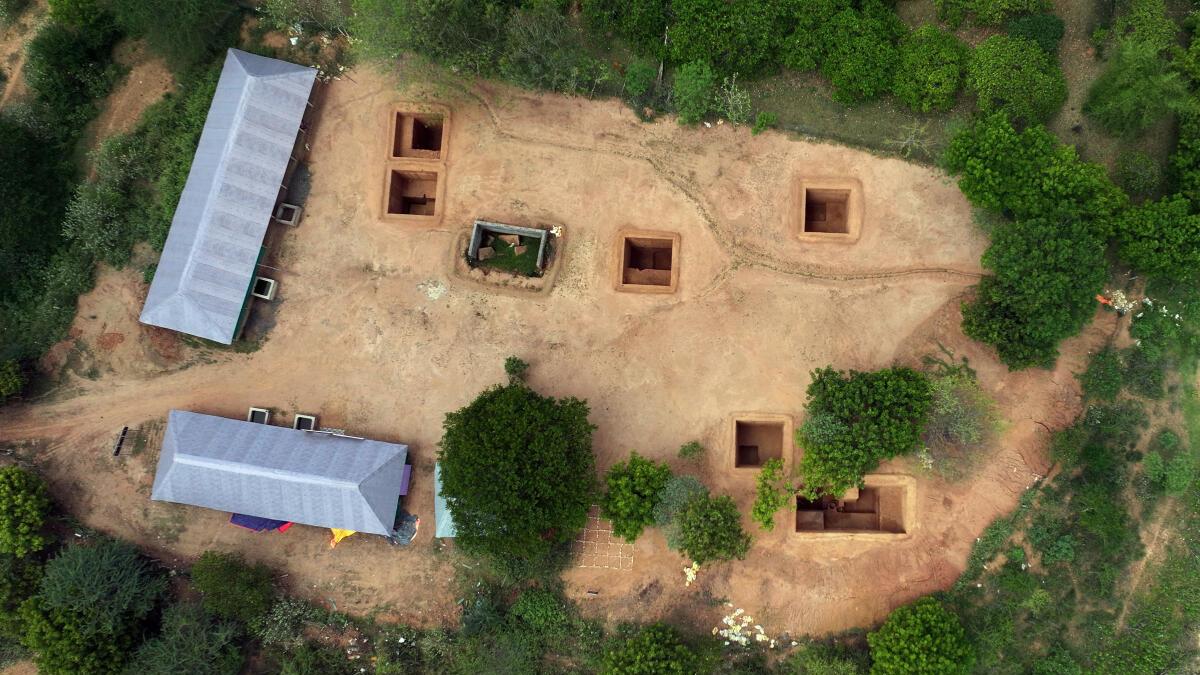
- 21 Jul 2025
In News:
The Tamil Nadu State Department of Archaeology (TNSDA) has completed a landmark archaeological excavation at Marungur village, located in Panruti taluk, Cuddalore district, uncovering a habitation-cum-burial site dating from the Iron Age to the Early Historic period. This multidisciplinary excavation offers significant insights into the cultural evolution of ancient Tamil Nadu’s Naduvil Mandalam (Central Territorial Division), between the Thenpennai and Vada Vellar rivers.
Key Features:
1. Rare Dual Site Discovery
- Both a habitation mound and an associated burial site were found together — a rarity in Tamil Nadu.
- The site is situated at 100 metres above mean sea level, adjacent to a pond and covered by laterite soil.
2. Chronological Context
- Dated tentatively to the transition from late Iron Age to Early Historic Period.
- Radiocarbon dating (AMS) of charcoal samples, phytolith studies, and Optically Stimulated Luminescence (OSL) analysis are underway to confirm dates.
3. Advanced Techniques Used
- UAV Mapping, LiDAR (Light Detection and Ranging), stratigraphic trenching, and archaeo-botanical studies.
- Collaboration with Beta Analytic Laboratory (USA) and the French Institute of Pondicherry for dating and pollen analysis.
Major Discoveries
A. Habitation Mound (8 Trenches Excavated)
- Pottery: Rouletted ware, red-slipped ware, black-and-red ware, grey ware, coarse red ware, and graffiti-inscribed potsherds (some resembling Indus signs).
- Artifacts (95 antiquities): Bone tools (points), burnishing stones, terracotta pipes, and beads (carnelian, agate, quartz, glass, terracotta).
- Iron implements: Crescent-shaped chisels, knives.
- Conch shell cores and antimony rods (ornamental use).
- Copper coin of Raja Raja Chola I from upper layers.
- Large terracotta storage jars (1.25 m), one containing six bone tools.
B. Burial Site (2 Trenches Excavated in Cashew Grove)
- Megalithic Stone Circles (Laterite):
- Two concentric circles (outer and inner), capstone-protected burial urns.
- Total of 10 urns recovered.
- Grave Goods:
- Iron swords, red jasper beads, black-and-red ware, red-slipped ware.
- Offering pots around urns — evidence of complex burial rituals.
C. Tamil-Brahmi Inscribed Potsherds
- Found in urn burials and dated paleographically to 2nd–3rd century BCE.
- Inscriptions include terms like “a-ti-y(a)-ka-n”, “a-ma-?”, and “a-ta”.
- Significance: Among earliest epigraphic evidence of Tamil-Brahmi in burial contexts.
Significance:
|
Aspect |
Significance |
|
Cultural Chronology |
Sheds light on the transition from the Iron Age to Early Historic society. |
|
Urban & Trade Patterns |
Proximity to ancient port cities like Arikamedu and Poompuhar hints at external trade. |
|
Script & Literacy |
Tamil-Brahmi inscriptions expand understanding of early Tamil epigraphy. |
|
Burial Practices |
Megalithic urn burials with grave goods indicate complex socio-religious beliefs. |
|
Scientific Advancement |
Integration of modern remote sensing and dating techniques in Indian archaeology. |
Future Steps
- Radiometric Dating: Charcoal to be analyzed using Accelerator Mass Spectrometry (AMS) in the USA.
- Pollen and phytolith analysis to reconstruct ancient diet and environmental conditions.
- Thermoluminescence and petrology studies to date ceramics and sediment exposure.
- TNSDA proposes further surveys at Manikkollai (30 km from Marungur) for 2025–26.
India Emerges as Global Leader in Real-Time Digital Payments
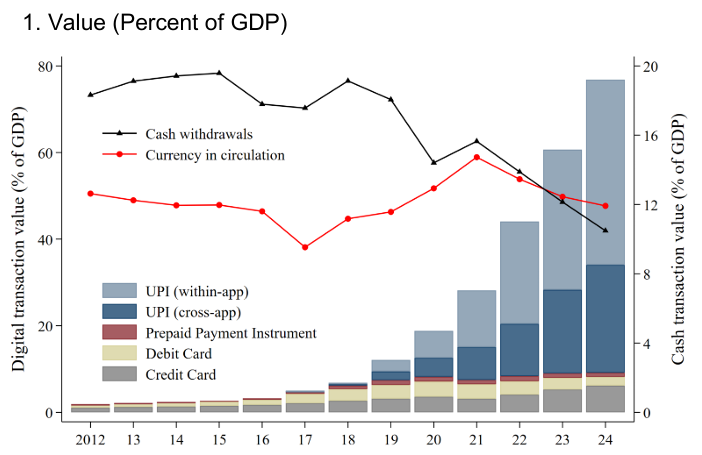
- 21 Jul 2025
In News:
India has cemented its position as the world’s foremost digital payments economy, with the Unified Payments Interface (UPI) registering 18.39 billion transactions in June 2025, according to a report jointly prepared by the International Monetary Fund (IMF) and FIS Global.
About the Report: Fast Payments 2025
- Prepared by: IMF and FIS Global
- Focus: Assessment of digital public infrastructure enabling real-time payments
- Key Metric Introduced: Faster Payment Adoption Score (FPAS) – a benchmark for evaluating the scale and effectiveness of fast payment systems across 30 countries
India’s Standout Performance
- Top Global Rank: India scored 87.5% on FPAS, ranking highest globally—outpacing Brazil, Singapore, the United Kingdom, and the United States.
- UPI Ecosystem Scale:
- Handles over 640 million daily transactions
- Caters to approximately 491 million users and 65 million merchants
- Supported by a network of 675+ banks
- Speed and Cost Efficiency:
- Payment settlement within 5 seconds
- Transactions are virtually cost-free for users
- International Footprint:
- UPI services are now live in seven countries, including France, UAE, and Singapore
- India is advocating its adoption within the BRICS+ grouping as a model for cross-border payment interoperability
Key Strengths of UPI Infrastructure
- Interoperability: Seamless transactions across multiple platforms (PhonePe, Google Pay, Paytm, etc.) and banks
- Inclusivity Features:
- Aadhaar-based linking
- USSD-based services for feature phones
- Multilingual interfaces to facilitate rural access
- Built on India Stack: Utilizes digital infrastructure components like Aadhaar, eKYC, DigiLocker, and Account Aggregator
- Security Framework:
- Real-time fraud detection
- Tokenization and robust regulatory oversight
- Collaborative Ecosystem: A joint effort of NPCI, fintech players, and RBI, ensuring scalability and resilience
88th Executive Committee Session of the Codex Alimentarius Commission (CCEXEC88)
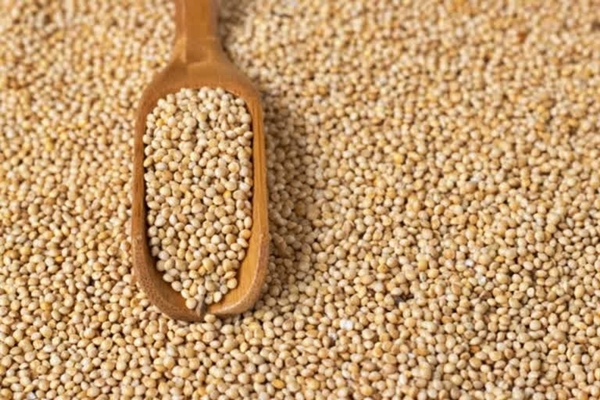
- 21 Jul 2025
In News:
India’s contributions were widely appreciated at the 88th Executive Committee Session of the Codex Alimentarius Commission (CCEXEC88) held at FAO Headquarters, Rome.
What is the Codex Alimentarius?
- A collection of internationally recognized food standards, guidelines, and codes of practice.
- Promotes consumer health protection, food safety, and fair-trade practices.
- Recognized under the WTO Agreement on the Application of Sanitary and Phytosanitary (SPS) Measures as a global reference point.
Codex Alimentarius Commission (CAC)
|
Feature |
Detail |
|
Established |
1963 by FAO and WHO |
|
Type |
Intergovernmental food standards body |
|
Headquarters |
Rome, Italy |
|
Objectives |
To protect consumer health and ensure fair practices in the food trade |
|
Members |
189 members: 188 countries + European Union |
|
India’s Membership |
Since 1964 |
Structure of CAC:
- Codex Commission
- Executive Committee (CCEXEC)
- Codex Secretariat
- Subsidiary Bodies and Committees
Meetings alternate between Geneva and Rome annually. Funded by regular budgets of FAO and WHO.
India’s Contributions at CCEXEC88 (2025):
1. Millet Standards: India chaired the development of Codex group standards for whole millet grains, alongside Mali, Nigeria, and Senegal. These standards are up for final approval at CAC48.
2. Strategic Planning (2026–2031):
- India led discussions on SMART (Specific, Measurable, Achievable, Relevant, Time-bound) indicators for monitoring Codex outcomes.
- These KPIs will guide Codex’s strategic direction and will be adopted at CAC48.
3. Regional Capacity Building:
- India mentored Bhutan, Nepal, Bangladesh, Sri Lanka, and Timor Leste under the Codex Trust Fund (CTF).
- Urged other developing countries to use the CTF for mentorship and twinning programs.
Other Leadership Roles by India in Codex:
|
Domain |
India's Role |
|
Spices & Herbs |
Chairs Codex Committee on Spices and Culinary Herbs (CCSCH) since 2014 |
|
Fresh Produce |
Led standard development for dates, co-chaired for turmeric and broccoli |
|
Digital Participation |
Promotes transparent, inclusive discussions in Codex committees |
National Codex Contact Point (NCCP), India
- Constituted by: Food Safety and Standards Authority of India (FSSAI)
- Role:
- Liaison with the Codex Secretariat
- Coordinate India’s input via National Codex Committee
- Facilitate domestic stakeholder consultation for Codex decisions
Kashi Declaration
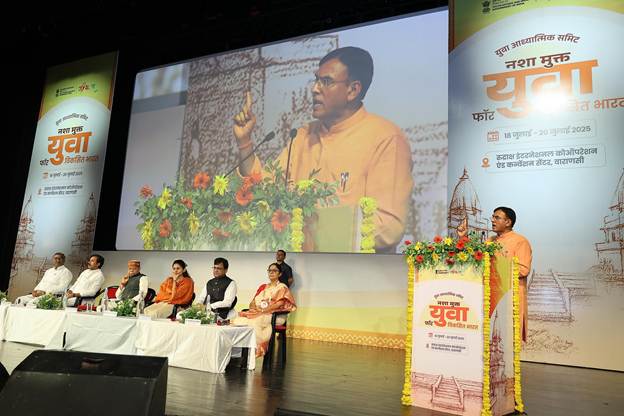
- 21 Jul 2025
In News:
The Youth Spiritual Summit 2025 concluded at the Rudraksh International Convention Centre, Varanasi, with the formal adoption of the Kashi Declaration — a landmark roadmap to combat drug abuse through youth and spiritual leadership.
- Organised by: Ministry of Youth Affairs and Sports
- Theme: "Drug-Free Youth for Developed India"
What is the Kashi Declaration?
The Kashi Declaration is a national action plan to counter substance abuse in India. It integrates spiritual wisdom, youth empowerment, and institutional coordination to establish a Nasha Mukt Yuva (Drug-Free Youth) by 2047, aligning with the vision of Viksit Bharat @2047.
Key Objectives:
- Eradicate Drug Abuse: Mobilise youth to build a drug-free society by 2047.
- Spiritual Mobilisation: Leverage India’s spiritual heritage as a tool for transformation and healing.
- Whole-of-Society Approach: Involve families, schools, communities, and institutions in prevention and rehabilitation.
- Empower Youth Volunteers: Enable MY Bharat clubs to conduct awareness, outreach, and de-addiction drives.
- Institutional Coordination: Establish a Joint National Committee for multi-ministerial convergence and periodic reporting.
Major Features:
|
Feature |
Details |
|
Plenary-Driven Agenda |
Covered themes of psychology, drug trafficking, awareness, and spiritual rehabilitation. |
|
Multi-Ministerial Action |
Involves Ministries of Youth Affairs, Social Justice, Home Affairs, Labour, and Culture. |
|
Annual Review Mechanism |
Progress tracked via the Viksit Bharat Young Leaders Dialogue 2026. |
|
Digital Monitoring |
Measures proposed to curb online targeting of schoolchildren for drugs. |
|
Community Outreach |
Grassroots campaigns, pledge drives, and support services launched through the MY Bharat platform. |
Institutional Mechanisms Proposed:
- Joint National Committee: For inter-ministerial coordination and implementation oversight.
- Annual Progress Reporting: Ensures transparent monitoring and accountability.
- National Platform: To connect affected youth with rehabilitation and support services.
Biostimulants

- 21 Jul 2025
In News:
Union Agriculture Minister Shivraj Singh Chouhan last week wrote to Chief Ministers of all states to immediately stop the “forced tagging” of nano-fertilisers or biostimulants along with conventional fertilisers.
What are Biostimulants?
Biostimulants are substances or microorganisms that enhance nutrient uptake, plant growth, yield, and stress resistance in crops. They are distinct from fertilisers and pesticides, as they do not directly supply nutrients or control pests.
- Composition: Often derived from plant waste, seaweed extracts, or microbes.
- Function: Stimulate physiological processes in plants.
- Not classified as: Fertilisers (under nutrient input) or Pesticides (regulated under Insecticides Act, 1968).
Official Definition (FCO, 1985): A substance or microorganism whose primary function is to stimulate physiological processes in plants, enhancing nutrient uptake, growth, and yield—but not including pesticides or plant growth regulators.
Regulatory Framework
- Governing Law: Fertiliser Control Order (FCO), 1985 – amended in February 2021 to include biostimulants.
- Central Biostimulant Committee (CBC): Established in April 2021 for five years to advise the Ministry on:
- Product approval and specifications
- Sampling/testing methods
- Lab and data standards
Toxicity and Safety Requirements:
To be approved, biostimulants must undergo:
- 5 acute toxicity tests: Oral, dermal, inhalation (rat), skin, and eye irritation (rabbit)
- 4 eco-toxicity tests: Impact on fish, birds, honeybees, and earthworms
- Field trials: At 3 agro-ecological zones, with 3 doses, for one crop season
No biostimulant shall contain pesticide beyond 0.01 ppm.
Why Tightened Regulation?
- Previous Lack of Oversight: Biostimulants operated in a regulatory vacuum for years.
- Market Flooded with Unapproved Products: Over 30,000 unregulated products were in circulation.
- Farmer Complaints: Rising concerns over efficacy and “forced sales” with subsidised fertilisers like urea and DAP.
- Judicial Push: A 2011 Punjab & Haryana HC observation prompted states to monitor biostimulant sales more stringently.
Recent Government Measures
- Provisional Registration (2021–2024): Allowed 2-year sale of products while testing was underway. Deadline extended repeatedly until June 16, 2024. Post-June 2024: Unsold stocks from unregistered firms are no longer permitted for sale.
- Retailer Misuse: Reports of retailers forcing farmers to buy biostimulants with subsidised fertilisers prompted Union Agriculture Minister Shivraj Singh Chouhan to direct states to halt such practices.
- Product Crackdown: From over 8,000 products four years ago, the number of approved products is now down to 650.
- Crop-Specific Specifications (May 2025): Government notified biostimulant standards for crops including tomato, chilli, brinjal, paddy, cotton, potato, soybean, maize, etc.
Prithvi-II and Agni-I Ballistic Missiles

- 19 Jul 2025
In News:
India recently conducted successful test-firings of its nuclear-capable short-range ballistic missiles Prithvi-II and Agni-I from the Integrated Test Range (ITR), Chandipur, Odisha. The trials aimed to validate operational readiness and technical reliability of India’s strategic missile systems.
These tests follow closely on the heels of the Indian Army's successful high-altitude test of the Akash Prime air defence system in Ladakh, underscoring India’s advancing indigenous defence capabilities.
Strategic Significance
- Conducted by: Strategic Forces Command (SFC) under routine training and validation exercises.
- Developed by: Defence Research and Development Organisation (DRDO) under the Integrated Guided Missile Development Programme (IGMDP).
- Purpose:
- To validate accuracy, technical parameters, and combat readiness.
- To reinforce India’s nuclear deterrence and second-strike capability.
- To ensure strategic preparedness post the May 2025 Indo-Pak conflict.
Prithvi-II Missile: Key Features
|
Parameter |
Details |
|
Type |
Short-range, surface-to-surface ballistic missile |
|
Range |
~350 km |
|
Propulsion |
Liquid-fuelled |
|
Payload Capacity |
Up to 500 kg |
|
Warhead Type |
Conventional and nuclear |
|
Navigation |
Advanced inertial navigation system |
|
Deployment |
Road-mobile launcher |
|
Speed |
Above Mach 1 |
|
Role |
Part of India’s tactical nuclear strike capability |
Agni-I Missile: Key Features
|
Parameter |
Details |
|
Type |
Short-range, single-stage ballistic missile |
|
Range |
700–900 km |
|
Propulsion |
Solid-fuelled |
|
Payload Capacity |
Up to 1,000 kg |
|
Warhead Type |
Conventional and nuclear |
|
Accuracy |
High precision with advanced guidance |
|
Induction |
Early 2000s, operational with Indian Army |
|
Strategic Role |
Integral to India’s minimum credible deterrence posture |
Green Synthesis of Hydrogen Peroxide
- 19 Jul 2025
In News:
Indian scientists at the S.N. Bose National Centre for Basic Sciences (SNBNCBS) have developed a novel, eco-friendly method to synthesize hydrogen peroxide (H?O?) directly from sunlight and water using a photocatalyst called Mo-DHTA COF. This innovation marks a significant advancement in green chemistry and sustainable industrial practices.
What is Hydrogen Peroxide (H?O?)?
- A colorless, bitter-tasting liquid with powerful oxidizing properties.
- Environmentally friendly: Decomposes into water and oxygen without leaving harmful residues.
- Naturally present in trace amounts in the atmosphere.
- Unstable and decomposes readily, releasing heat.
- Found in household use (3–9% concentration) for disinfection, bleaching, and wound cleaning.
Applications
- Medical: Disinfectant, wound cleaner.
- Industrial: Textile and paper bleaching, foam rubber production, and rocket propellant.
- Environmental: Wastewater treatment, green sterilization.
- Energy & Chemistry: Fuel cells, chemical synthesis, and potentially in CO? reduction and water splitting.
Limitations of Conventional H?O? Production
- Energy-intensive and environmentally hazardous.
- Costly and not sustainable for large-scale, decentralized applications.
The Innovation: Mo-DHTA COF
What is it?
- Mo-DHTA COF stands for dimolybdenum paddlewheel-embedded Covalent Organic Framework.
- Developed by a DST-supported research team at SNBNCBS.
- Published in the journal Small.
Photocatalytic Mechanism
- Made from α-hydroquinone-based organic linkers and dimolybdenum units.
- Upon visible light exposure, the material generates excitons (electron-hole pairs).
- Electrons reduce oxygen to superoxide radicals, which then convert to H?O? through further reactions.
- Functions in various media (ethanol, benzyl alcohol, and even pure water).
Advantages of Mo-DHTA COF
|
Feature |
Description |
|
Eco-Friendly |
Uses only water and sunlight—no harmful by-products. |
|
High Photocatalytic Efficiency |
Effective even in pure water, not just organic solvents. |
|
Stability |
Structurally stable and recyclable, suitable for long-term use. |
|
Enhanced Performance |
Overcomes limitations of earlier photocatalysts like metal oxides, g-C?N?, and MOFs. |
|
Scalable |
Promising for industrial upscaling and decentralized chemical production. |
Significance and Future Potential
- Green Chemistry: Sets a foundation for cleaner chemical production methods.
- Healthcare & Pharma: Enables low-cost production of disinfectants.
- Environmental Remediation: Supports sustainable water purification and sterilization.
- Energy & Materials Science: Potential use in CO? reduction, water splitting, and fuel cell technologies.
- Research Outlook: Future focus includes optimization of metal-embedded COFs and exploring other catalytic systems for broader applications.
Akash Prime Missile System

- 19 Jul 2025
In News:
India has successfully conducted a high-altitude trial of the Akash Prime surface-to-air missile system in Ladakh, marking a major step in strengthening indigenous air defence capabilities, particularly for mountainous and high-altitude terrains.
What is Akash Prime?
Akash Prime is an upgraded variant of the Akash Surface-to-Air Missile (SAM) system, developed by the Defence Research and Development Organisation (DRDO). It is designed to operate efficiently in high-altitude, low-oxygen environments—ideal for India’s sensitive border regions like Ladakh and Sikkim.
Developers
- DRDO – Lead developer
- In collaboration with:
- Bharat Dynamics Limited (BDL)
- Bharat Electronics Limited (BEL)
Key Features
|
Feature |
Description |
|
Purpose |
Neutralizes aerial threats like enemy aircraft, drones, and cruise missiles |
|
Altitude Performance |
Successfully tested at 15,000 ft; engineered for deployment above 4,500 metres |
|
Seeker Technology |
Equipped with an indigenous Radio Frequency (RF) seeker for precise target acquisition during terminal phase |
|
Guidance System |
Hybrid: Command guidance + terminal active homing |
|
Range & Speed |
Operates within 25–30 km range; travels at Mach 2.5 |
|
Mobility |
Mounted on mobile platforms for rapid deployment across terrains |
|
All-Weather Capability |
Functions in extreme cold and low-density atmospheric conditions |
|
Kill Probability |
88% (single missile); up to 98.5% in dual-salvo mode |
Operational Significance
- High-Altitude Readiness: Specifically tailored for mountainous regions such as the Line of Actual Control (LAC).
- Versatile Deployment: Protects mobile, semi-mobile, and fixed military installations.
- Strategic Feedback Integration: Incorporates enhancements based on feedback from armed forces for use in vital installations.
Strategic Importance
- Aatmanirbhar Bharat: Fully indigenous system contributing to self-reliance in defence manufacturing.
- Cost Efficiency: Reduces dependency on imported air defence systems.
- Force Multiplier: Strengthens India’s layered air defence network against modern aerial threats.
Swachh Survekshan 2024–25
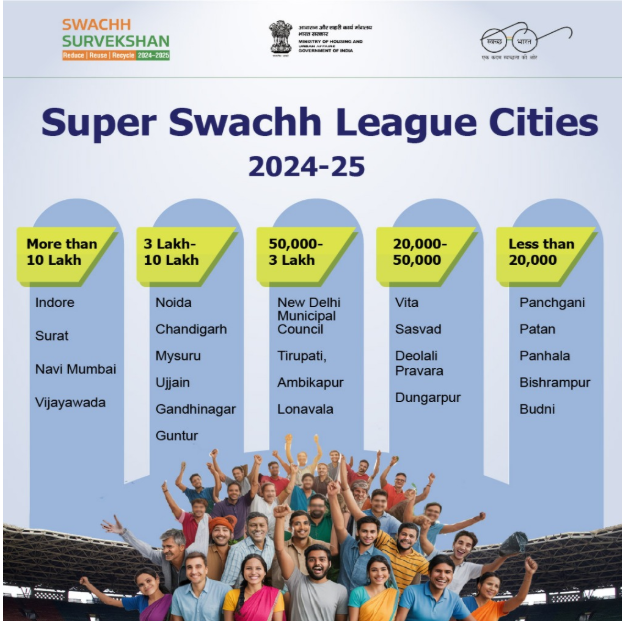
- 19 Jul 2025
In News:
Swachh Survekshan 2024–25, the world's largest urban sanitation survey, has marked a new milestone in India’s cleanliness journey under the Swachh Bharat Mission–Urban (SBM-U). Conducted by the Ministry of Housing and Urban Affairs (MoHUA), this 9th edition evaluated 4,500+ Urban Local Bodies (ULBs), reflecting deepened citizen engagement and growing competition among cities.
Key Highlights
- Cleanest Big City (10+ lakh population): Ahmedabad (Gujarat) ranked 1st for the first time, Bhopal (Madhya Pradesh), Surat (Gujarat).
- Swachh Bharat Super League 1.0: Introduced for cities with sustained performance—Indore, Surat, and Navi Mumbai led the league.
- Top Mid-Sized Cities (3–10 lakh): Mira-Bhayandar (1st), Bilaspur (2nd), Jamshedpur (3rd).
- Top Small Cities (<1 lakh): Sasvad (1st), Lonavala, Vita.
- Best Ganga Towns: Prayagraj, Varanasi, and Bijnor.
- Cleanest Cantonment: Secunderabad Cantonment Board.
- Best Performing States: Maharashtra, Madhya Pradesh, Chhattisgarh.
- Cleanest State Capital: Bhopal.
- Sanitation Worker Safety Awards: Visakhapatnam, Jabalpur, and Gorakhpur were recognised under SafaiMitra Surakshit Shehar.
Swachh Survekshan Framework
- Launched: 2016 under SBM-U.
- Objective: Foster competition among cities for sanitation and cleanliness.
- 2024–25 Innovations:
- One City, One Award principle for fair evaluation across population sizes.
- Super Swachh League: Honours cities with consistent top-tier performance.
- Real-time monitoring: Integrated Command and Control Centres (ICCCs) used for validation.
- Digital citizen engagement: Over 14 crore citizens participated via apps and feedback systems.
- 3R Emphasis: Focus on Reduce, Reuse, Recycle as a sustainability principle.
Super Swachh League (SSL)
- A newly created elite category within the survey.
- Aim: To promote continuous excellence in urban sanitation.
- Criteria:
- Minimum 3-star Garbage Free City (GFC) rating.
- Consistent top performance in waste management, segregation, ODF++ status, and citizen engagement.
- Population Brackets:
- 10 lakh+ (e.g., Ahmedabad, Indore, Surat)
- 3–10 lakh (e.g., Mysuru, Noida, Chandigarh)
- Below 3 lakh (with revised benchmarks)
Recognitions and Best Practices
- Waste-to-Wealth Initiatives: Recycled waste used to create artistic gifts for dignitaries.
- “Each One Clean One” Mentorship: Top 78 cities to mentor one lower-performing city each.
- Clean Kumbh Operations: Prayagraj efficiently managed waste during the Mahakumbh, which witnessed a footfall of 66 crore pilgrims.
- AI-Based Monitoring: Artificial intelligence tools deployed for cleanliness validation.
- Citizen-Centric Innovations: Apps and grievance portals boosted accountability.
Impact on Governance and Society
- Decentralised Sanitation Success: Cities like Bilaspur and Jamshedpur emerged as sanitation leaders.
- Inclusion of Smaller Towns: Simplified evaluation allowed small towns to compete on equal footing.
- Women & Youth Engagement: SHGs and youth campaigns played a major role in waste segregation drives.
- Job Creation & Entrepreneurship: Growth in green jobs and circular economy-based startups.
- Sanitation Worker Welfare: Greater focus on dignity, safety, and health of SafaiMitras.
Swachh Bharat Mission–Urban (SBM-U)
- Launched: October 2, 2014
- Phase II (SBM-U 2.0): Running from October 1, 2021 to 2026
- Goals:
- Eliminate open defecation
- Ensure 100% scientific waste management
- Make cities “Garbage-Free”
- Aligned with: India’s SDG 2030 goals and Viksit Bharat 2047 vision
Gujarat launches India’s First Tribal Genome Sequencing Project
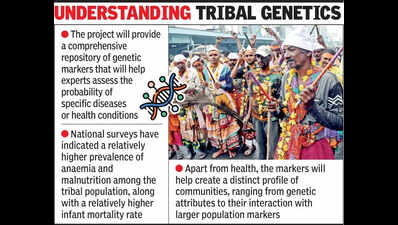
- 19 Jul 2025
In News:
Gujarat has become the first Indian state to launch a genome sequencing initiative specifically targeting tribal communities. The Tribal Genome Sequencing Project, announced in July 2025, aims to identify genetic health risks among tribal populations and develop precision healthcare strategies.
About the Project
- Name: Creation of Reference Genome Database for Tribal Population in Gujarat
- Launched by: Gujarat Biotechnology Research Centre (GBRC)
- Coverage: 2,000 individuals from tribal communities across 17 districts in Gujarat
- Budgetary Support: Part of the Gujarat State Budget 2025–26
Objectives
- Identify genetic risk markers for inherited disorders such as:
- Sickle cell anaemia
- Thalassaemia
- Hereditary cancers
- Develop personalised healthcare protocols tailored to tribal genetic profiles.
- Detect natural immunity markers to aid targeted medical interventions.
- Promote data-driven tribal health equity and science-led empowerment.
Key Features
- Establishes advanced infrastructure for:
- Sample collection
- Genome sequencing
- Genetic data interpretation
- Enables early detection and targeted treatment for genetically inherited diseases.
- Involves community engagement for inclusive participation and awareness.
- Represents diverse tribal groups, ensuring comprehensive genomic mapping.
Significance
- Healthcare Equity: Bridges the healthcare gap by enabling affordable, preventive, and precision medicine for marginalised tribal communities.
- Scientific Advancement: Provides a genomic reference database for long-term public health research and policy planning.
- Scalability: Sets a precedent for other Indian states to replicate region-specific genomic initiatives aimed at health inclusion.
What is Genome Sequencing?
- A genome is the complete set of DNA in an organism.
- Human DNA comprises 23 pairs of chromosomes, made up of millions of nucleotide bases: Adenine (A), Thymine (T), Guanine (G), Cytosine (C)
- Whole Genome Sequencing (WGS) decodes the exact sequence of these bases, helping identify genetic disorders and traits.
ADEETIE Scheme
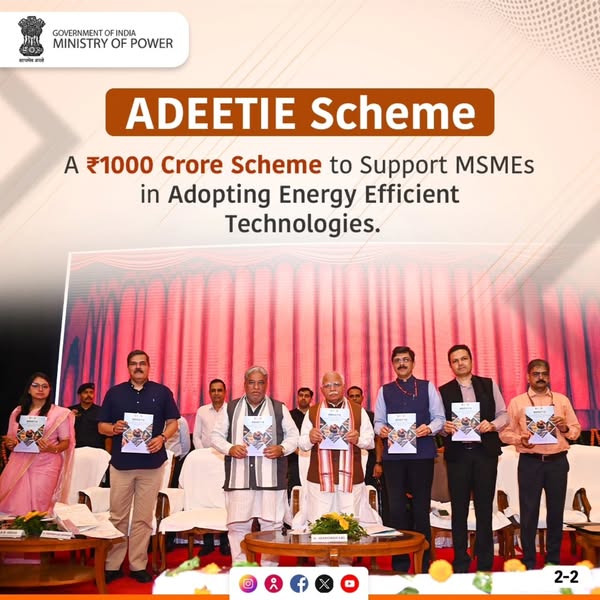
- 18 Jul 2025
In News:
The Ministry of Power launched the Assistance in Deploying Energy Efficient Technologies in Industries & Establishments (ADEETIE) scheme to promote energy efficiency in Micro, Small, and Medium Enterprises (MSMEs).
Key Details:
- Objective: To reduce energy consumption by 30–50%, enhance the power-to-product ratio, and facilitate the creation of green energy corridors in MSME industrial sectors.
- Implementing Agency:
- o Bureau of Energy Efficiency (BEE), under the Ministry of Power
- o Legislative backing: Energy Conservation Act, 2001
- Duration & Funding
- o Period: FY 2025–26 to 2027–28 (3 years)
- o Budgetary Outlay: ?1000 crore
- Target Beneficiaries
- Eligible Enterprises: MSMEs with Udyam ID
- Must demonstrate a minimum 10% energy savings using implemented technologies
- Sectoral Coverage: Targets 14 energy-intensive sectors, including: Brass, Bricks, Ceramics, Chemicals, Fisheries, Food Processing, etc.
- Implementation Strategy Phased Roll-out:
- Phase 1: 60 industrial clusters
- Phase 2: Additional 100 clusters
Scheme Components
|
Component |
Details |
|
Interest Subvention |
- 5% for Micro & Small Enterprises |
|
Technical Assistance |
- Investment Grade Energy Audits (IGEA) |
|
Financial Support |
- Incentives for adoption of efficient technologies |
Other BEE Initiatives for MSMEs
|
Initiative |
Purpose |
|
BEE-SME Programme |
Promote energy efficiency in MSMEs |
|
National Programme on Energy Efficiency & Technology Upgradation |
Modernize and reduce energy intensity |
|
SIDHIEE Portal |
Digital tool providing energy efficiency insights and handholding support |
Bureau of Energy Efficiency (BEE)
- The Government of India set up the Bureau of Energy Efficiency (BEE) on March 1, 2002 under the provisions of the Energy Conservation Act, 2001.
- The mission of the Bureau of Energy Efficiency is to assist in developing policies and strategies with a thrust on self-regulation and market principles, within the overall framework of the Energy Conservation Act, 2001 with the primary objective of reducing the energy intensity of the Indian economy.
- BEE coordinates with designated consumers, designated agencies and other organizations and recognises, identifies and utilises the existing resources and infrastructure, in performing the functions assigned to it under the Energy Conservation Act.
- The Energy Conservation Act provides for regulatory and promotional functions.
Prime Minister Professorships Scheme
- 18 Jul 2025
In News:
To strengthen India’s research and innovation ecosystem, the Anusandhan National Research Foundation (ANRF) has launched the Prime Minister Professorships under its flagship Promoting Advanced and Inclusive Research (PAIR) programme.
Objective
The scheme aims to:
- Utilize the expertise of retired scientists, industry professionals, and Professors of Practice
- Mentor faculty and students in State universities with emerging research ecosystems
- Address gaps in R&D capacity and promote globally competitive research
Key Features of the Prime Minister Professorship Scheme
|
Aspect |
Details |
|
Implementing Agency |
Anusandhan National Research Foundation (ANRF), under DST |
|
Eligibility |
- Superannuated scientists/faculty from reputed Indian/foreign institutions |
|
Host Institutions |
Category A State universities classified as spoke institutions under the PAIR programme |
|
Relocation Requirement |
Full-time presence at the host university is mandatory |
|
Tenure |
Up to 5 years, based on performance review |
|
Financial Support |
?30 lakh/year fellowship ?24 lakh/year research grant ?1 lakh/year overhead for host university |
|
Restrictions |
Cannot draw parallel fellowship/salary from other institutions; IP rights governed by host institution norms |
About PAIR Programme
|
Component |
Description |
|
Goal |
To foster inclusive, high-quality research in institutions with limited R&D capacity |
|
Hub Institutions |
Top 25 in NIRF rankings or Institutions of National Importance (within top 50) |
|
Spoke Institutions |
Central & State public universities, select NITs and IIITs |
|
Mentorship Ratio |
One hub can mentor up to 7 spoke institutions |
|
Participation Criteria |
|
Responsibilities of Selected Professors
- Mentor students and faculty for world-class research
- Guide establishment of labs and research facilities
- Promote interdisciplinary collaboration
- Facilitate industry-research linkages
- Provide 6-month internships at advanced labs or institutions
Significance for India’s R&D Ecosystem
- Addresses regional imbalance in research infrastructure
- Strengthens the research culture in State universities
- Enables structured national and international collaborations
- Promotes grassroots innovation and scientific leadership
India’s First Digital Nomad Village in Sikkim

- 18 Jul 2025
In News:
Yakten, a village in Pakyong district, Sikkim, was officially declared India’s first Digital Nomad Village under the ‘Nomad Sikkim’ initiative.
Objective of the Initiative
- Transform strategic locations in Sikkim into year-round hubs for digital professionals from India and abroad.
- Ensure sustainable income for homestay owners during the lean tourism season (April–October).
- Promote sustainable tourism, remote work, and grassroots entrepreneurship.
Key Features:
|
Feature |
Details |
|
Connectivity |
Village-wide Wi-Fi, dual internet lines |
|
Electricity |
Inverters for uninterrupted power supply |
|
Eco-Initiatives |
Zero-waste management, eco-friendly practices |
|
Water Security |
Long-term solution planned under Jal Jeevan Mission |
|
Employment Focus |
Aligned with CM’s “One Family, One Entrepreneur” mission |
Who is a Digital Nomad?
A digital nomad is a person who uses technology to work remotely while traveling or residing in different locations, often in scenic or peaceful areas.
Implementation Partners
- District Administration (Pakyong)
- NGO Sarvahitey
Sikkim: A Pioneer in Sustainable Development
Sikkim holds the distinction of being:
- India’s first fully organic state (2016)
- First state to achieve 100% ODF status (2016)
- First to introduce organic aquaculture
Quantum Noise and Intraparticle Entanglement
- 18 Jul 2025
In News:
A collaborative study led by the Raman Research Institute (RRI), Bengaluru, in association with Indian and international institutions, has made a groundbreaking discovery: quantum noise, often seen as a disruptive factor in quantum systems, may facilitate or even revive quantum entanglement under specific conditions.
Key Scientific Concept: Quantum Entanglement
- Quantum Entanglement: A quantum phenomenon where particles remain interconnected such that the state of one particle instantly influences the state of another, regardless of distance.
- Intraparticle Entanglement: A lesser-known form of entanglement occurring between different properties (degrees of freedom) of a single particle, as opposed to interparticle entanglement (between two or more particles).
The Discovery
- Contrary to long-held assumptions, quantum noise, specifically amplitude damping, can:
- Revive lost intraparticle entanglement
- Generate entanglement in initially unentangled intraparticle systems
- In contrast, interparticle entanglement under similar noise conditions only decays without revival.
Types of Quantum Noise Studied
- Amplitude Damping: Simulates energy loss, akin to an excited state relaxing to a ground state.
- Phase Damping: Disrupts phase relationships, impacting quantum interference.
- Depolarizing Noise: Randomizes the quantum state in all directions.
- Key Finding: Intraparticle entanglement is more robust and less susceptible to decay across all three noise types.
- Scientific Tools Used
- Derived an analytical formula for concurrence (a measure of entanglement)
- Developed a geometric representation of how entanglement behaves under noise
Institutions Involved
- Raman Research Institute (RRI) – Lead Institute (Autonomous under DST)
- Indian Institute of Science (IISc)
- Indian Institute of Science Education and Research (IISER), Kolkata
- University of Calgary
- Funded by:
- India-Trento Programme on Advanced Research (ITPAR)
- National Quantum Mission (NQM), Department of Science and Technology (DST)
Applications and Significance
- Could lead to more stable and efficient quantum systems
- Implications for Quantum Communication and Quantum Computing
- Results are platform-independent (applicable to photons, trapped ions, neutrons)
- Provides a realistic noise model (Global Noise Model) for practical quantum technologies
Maglev Technology
- 18 Jul 2025
In News:
China has successfully tested magnetic levitation (Maglev) technology, potentially enabling trains to travel faster than aircraft.
What is Maglev Technology?
Magnetic Levitation (Maglev) is an advanced transportation technology that uses electromagnetic forces to levitate and propel trains without physical contact with the track. The train is lifted off the track using opposing magnetic fields, eliminating friction and enabling extremely smooth, silent, and high-speed travel.
Origin and Development
- Inventors: Robert Goddard (USA) and Emile Bachelet (French-American) first conceptualized maglevs in the early 1900s.
- Commercial Use: Maglev systems have been operational since 1984.
How Maglev Works
Maglev trains operate on three core principles:
- Levitation: Magnets lift the train above the guideway.
- Guidance: Electromagnets maintain lateral stability.
- Propulsion: Linear motors create magnetic fields that push/pull the train forward.
- The system involves superconducting magnets or electromagnets embedded in both the train and the track (guideway).
- Recent advancements include the use of high-temperature superconducting levitation and vacuum tubes, reducing air resistance and energy loss.
Recent Breakthrough: China's Supersonic Maglev
- Developed by: China Railway Rolling Stock Corporation (CRRC)
- Top Speed Achieved: 620+ mph (998+ km/h), faster than commercial aircraft (547–575 mph).
- Latest Test Site: Donghu Laboratory, Hubei Province, June 2024.
- A 1.1-ton train accelerated to 404 mph in under 7 seconds on a 1,968-foot track inside a vacuum tube.
- Design:
- Sleek, aerodynamic nose to reduce drag.
- Spacious interior with digital displays for passenger comfort.
Future Potential
- Travel Time Reduction:
- Beijing–Shanghai: From 5.5 hours (current high-speed rail) to 2.5 hours.
- Delhi–Kolkata (if implemented in India): Estimated to take under 2.5 hours for ~1,200 km.
- Ongoing Projects: Full-scale high-speed maglev tracks expected to be completed in China by end of 2025.
Key advantages of Maglev
|
Feature |
Benefits |
|
Speed |
Exceeds 600 km/h; faster than short-haul flights |
|
Efficiency |
Lower energy loss; high acceleration/deceleration capacity |
|
Eco-Friendliness |
Zero direct emissions; compatible with renewable energy |
|
Low Maintenance |
No physical contact = minimal wear & tear |
|
Passenger Comfort |
Silent ride with negligible vibration |
Behdeinkhlam Festival
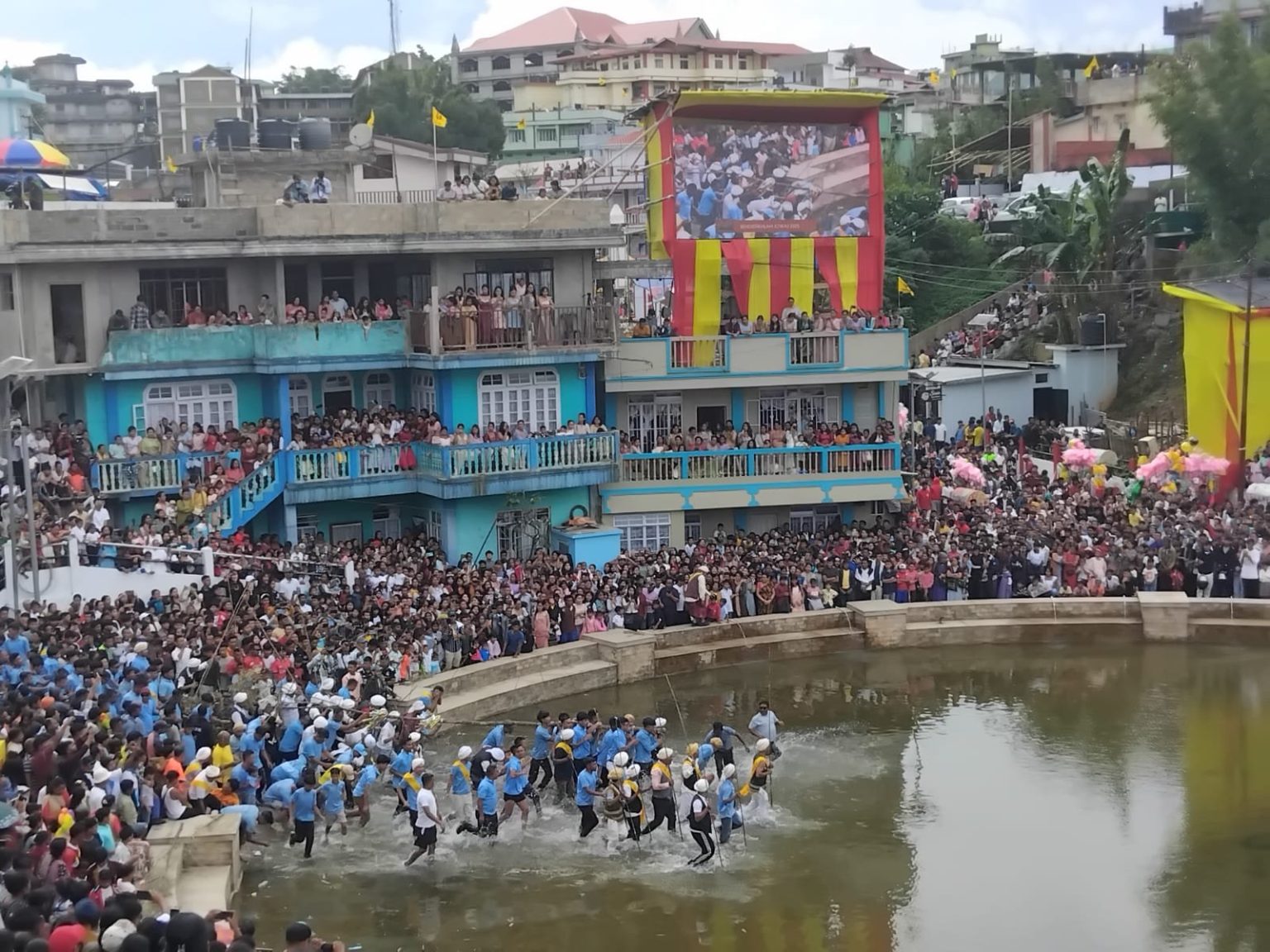
- 17 Jul 2025
In News:
The Behdeinkhlam Festival, a vibrant cultural and religious celebration of the Pnar community in Jowai, Meghalaya, was recently observed with great enthusiasm. Blending age-old indigenous rituals with contemporary social messages, the festival reflects the rich cultural heritage and evolving societal concerns of the Jaintia Hills region.
Etymology and Meaning
- The term “Behdeinkhlam” comes from the Pnar language:
- “Beh Dien” – to drive away with sticks or prayers.
- “Khlam” – refers to plague, pestilence, or disease.
- Thus, the name signifies a ritual expulsion of illness, evil spirits, and misfortune, historically associated with diseases like cholera.
Cultural and Religious Significance
- Primarily celebrated by the Pnars, a sub-tribe of the Jaintia community, the festival is a symbolic act of:
- Protecting society from disease.
- Invoking blessings for a bountiful harvest.
- Promoting community health, peace, and prosperity.
- It plays a crucial role in preserving the Niamtre faith, the indigenous religion of the Jaintia people, through intergenerational participation in ritual practices.
Timing and Duration
- Held annually in July, right after the sowing season, the festival lasts for three days.
- The timing is agriculturally significant, linking health rituals with hopes for a successful farming cycle.
Key Rituals and Celebrations
- Symbolic Rituals:
- Men go around beating the roofs of houses with bamboo poles to drive away evil spirits and symbolic disease.
- Tree trunks known as Dein Khlam and Khnong—rounded, straight, and polished—are brought from the forest and used in the main rituals.
- Community Processions:
- A sacred wooden post called Symbud Khnong is carried around the town and installed as a spiritual safeguard.
- Gender Roles in Rituals:
- Men perform dances, carry the sacred logs, and lead the processions.
- Women play a vital ceremonial role by preparing sacrificial food for ancestral spirits.
- Dance and Music: On the final day, the community gathers at Aitnar, where both young and old dance to the rhythmic beats of pipes and drums.
- Dad-Lawakor – Traditional Game: A unique football-like game called Dad-lawakor is played at Mynthong, showcasing indigenous sporting traditions and community bonding.
Contemporary Relevance
- In recent years, the festival has evolved to incorporate modern themes such as:
- Awareness against drug abuse
- Prevention of alcoholism
- Climate change consciousness
- These additions reflect a harmonious blending of tradition and modernity, where festivals serve both spiritual and civic functions.
Sierra Leone’s First UNESCO World Heritage Site
- 17 Jul 2025
In News:
In a landmark achievement for global environmental conservation, Sierra Leone has secured its first UNESCO World Heritage Site with the inscription of the Gola-Tiwai Complex, comprising the Tiwai Island Wildlife Sanctuary and the Gola Rainforest National Park (GRNP). This milestone is the result of over three decades of environmental activism led by Tommy Garnett, founder of the Environmental Foundation for Africa (EFA).
About the Gola-Tiwai World Heritage Site
Location
- Southern Sierra Leone, along the Moa River, near the Liberia border.
Components
- Tiwai Island Wildlife Sanctuary
- Area: Only 12 sq. km
- Biodiversity: Home to 11 primate species, including:
- Western Chimpanzee (endangered)
- Diana Monkey
- *King Colobus Monkey
- Serves as a biodiversity research hub and ecotourism destination in West Africa.
- Gola Rainforest National Park
- Sierra Leone’s largest tropical rainforest
- Biodiversity Highlights:
- Pygmy Hippopotamus
- Critically Endangered African Forest Elephant
- Numerous bird, insect, and plant species
- Provides critical services such as:
- Carbon sequestration
- Climate regulation
- Genetic biodiversity conservation
Ecological and Global Significance
- Biodiversity Hotspot: The Gola-Tiwai complex is one of the most biologically diverse areas in West Africa.
- Sustainable Development Model:
- Combines community engagement, scientific research, and eco-tourism.
- Sets a precedent for post-conflict environmental restoration.
- Global Climate Importance: The rainforest acts as a carbon sink, playing a role in mitigating climate change.
- Cultural-Ecological Linkages: Local communities depend on forests for livelihoods, traditions, and spiritual practices.
Geographical Context: Sierra Leone
Capital: Freetown
- Located on a peninsula with one of the world’s largest natural harbours.
Neighbouring Countries: Guinea (North and East), Liberia (Southeast), Atlantic Ocean (Southwest)
Key Geographical Features:
- Mountains:
- Mount Bintimani (Loma Mansa) – Highest peak at 1,948 m (6,391 ft)
- Tingi Hills, Sula Plateau, Kambui Schists
- Rivers:
- Major rivers: Moa, Sewa, Mano, Rokel
- Originate in Fouta Djallon highlands in Guinea
- Coastal Plains: Include mangrove swamps, lateritic soils, and seasonally flooded Bolilands
- Climate: Tropical with high rainfall and Harmattan winds in dry seasons
Natural Resources:
- Rich in diamonds, gold, rutile, and bauxite
- Economy based on mining and agriculture
Noctilucent Clouds
- 17 Jul 2025
In News:
Recently, rare noctilucent clouds were sighted over parts of Scotland, drawing attention due to their unique shimmering appearance in the night sky. These occurrences are significant in the context of climate studies and upper atmospheric science.
What are Noctilucent Clouds?
- Definition: Noctilucent clouds (NLCs), also known as polar mesospheric clouds, are high-altitude ice crystal clouds that appear thin, wispy, and glow with a blue or silvery hue after sunset.
- Etymology: The term “noctilucent” is derived from Latin—"nocto" (night) and "lucent" (shining)—meaning "night shining."
Atmospheric Location
- These are the highest clouds in Earth’s atmosphere, found in the mesosphere, around 76–85 km above the Earth's surface.
- In contrast, most other cloud types form in the troposphere, the lowest atmospheric layer.
Seasonal and Geographical Occurrence
- Seasonality:
- Northern Hemisphere: Visible from late May to early August, peaking during June and July.
- Southern Hemisphere: Much rarer; may appear from late November to early February, most commonly in December and January.
- Latitude Range: Typically occur between 45° and 80° latitude, both north and south of the equator.
- Visibility Conditions:
- Seen only during summer months, shortly after sunset or just before sunrise.
- The Sun remains just below the horizon, illuminating these high clouds from below, creating a glowing effect while the lower atmosphere is in darkness.
Formation Mechanism
- Composition: Made up of tiny ice crystals.
- Temperature Conditions: The mesosphere becomes extremely cold during summer, enabling the formation of ice on fine particles.
- Sources of Dust Nuclei:
- Natural: Micrometeorites, volcanic dust.
- Anthropogenic: Rocket exhaust particles and other upper-atmospheric pollutants.
- Optical Phenomenon: These ice crystals reflect sunlight even when the lower atmosphere is dark, giving them their luminous appearance.
Significance
- Serve as indicators of mesospheric conditions, especially temperature and humidity.
- Their increasing frequency and intensity in recent decades may be linked to climate change and human activities, including space exploration.
- Valuable for understanding upper atmospheric dynamics, particularly in the context of atmospheric chemistry and space weather.
Pradhan Mantri Divyasha Kendra (PMDK)
- 17 Jul 2025
In News:
The Union Ministry of Social Justice & Empowerment has recently inaugurated the 75th Pradhan Mantri Divyasha Kendra (PMDK) at the Government Medical College, Badaun, Uttar Pradesh, marking a significant milestone in India's efforts toward inclusive social welfare.
About PMDK
The Pradhan Mantri Divyasha Kendra (PMDK) is a flagship initiative of the Government of India aimed at delivering integrated rehabilitation and assistive services under one roof. It caters primarily to:
- Persons with Disabilities (Divyangjan), as identified under the Rights of Persons with Disabilities Act, 2016.
- Senior Citizens, especially those from economically weaker sections (EWS).
These centres offer comprehensive services including:
- Assessment and evaluation
- Counselling
- Distribution of assistive devices
- Post-distribution follow-up care
Institutional Framework
PMDKs operate under the aegis of the Ministry of Social Justice & Empowerment, and are implemented by the Artificial Limbs Manufacturing Corporation of India (ALIMCO), a Central Public Sector Undertaking under the Department of Empowerment of Persons with Disabilities (DEPwD).
Schemes Implemented through PMDKs
- Assistance to Disabled Persons for Purchase/Fitting of Aids and Appliances (ADIP Scheme): Aims to assist Divyangjan with suitable, durable, and scientifically manufactured aids and appliances.
- Rashtriya Vayoshri Yojana (RVY): Focuses on providing free-of-cost assistive devices to senior citizens from BPL or economically weaker backgrounds.
Beneficiary-Oriented Impact
- With the inauguration of the latest centre in Badaun, the total number of operational PMDKs in the country has reached 75.
- These centres have collectively benefited over 1.4 lakh individuals, distributing assistive devices worth ?179.15 lakh.
- Devices offered include:
- Tricycles, wheelchairs, walkers
- Hearing aids and artificial limbs
- Other mobility and sensory support equipment
Significance and Relevance
The PMDK initiative plays a crucial role in addressing the accessibility gap in health and welfare services for Divyangjan and elderly citizens. By establishing these centres at regional medical hubs, the government is:
- Reducing the travel burden and logistical challenges for beneficiaries.
- Ensuring dignified, timely, and localised support.
- Strengthening the implementation of constitutional and legal mandates under Articles 41 and 46, which call for state support to the vulnerable sections of society.
Machilipatnam
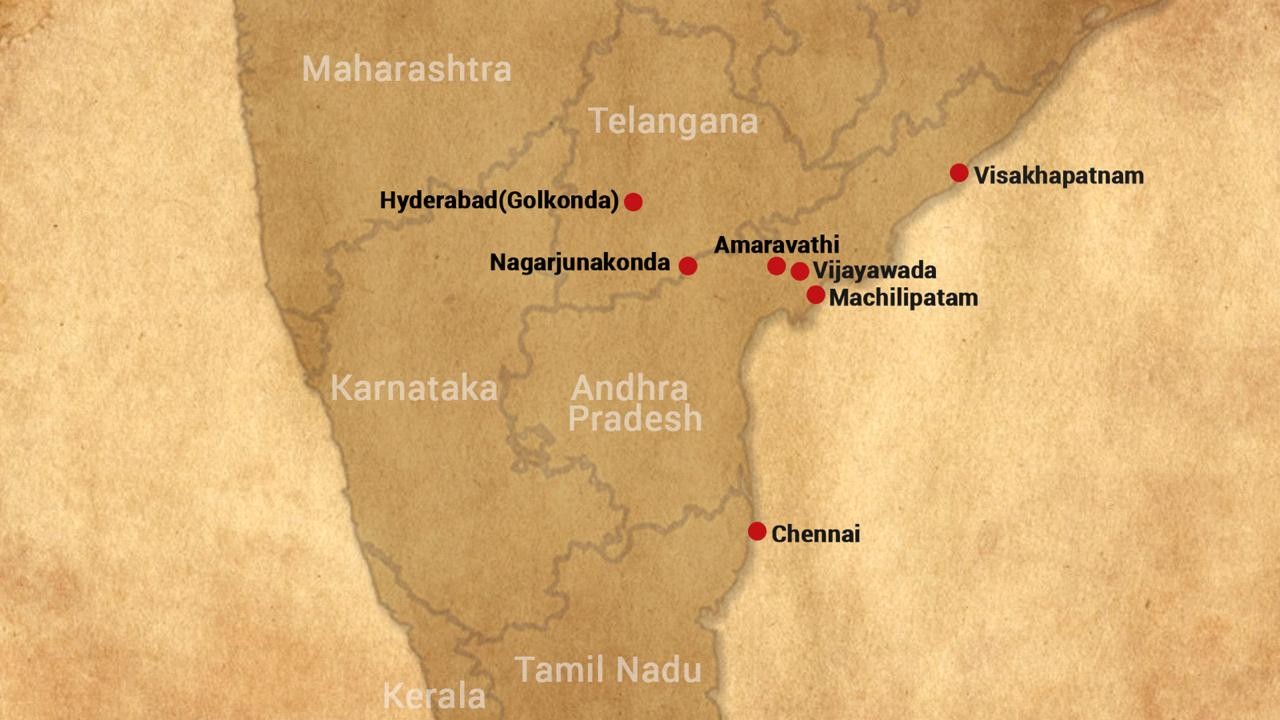
- 17 Jul 2025
In News:
Located at the confluence of the Krishna River and the Bay of Bengal, Machilipatnam—historically known as Masulipatnam—is a port town with a rich maritime legacy. Once a prominent node in ancient and medieval trade networks, the town is now experiencing renewed attention and developmental revival.
Ancient Maritime Significance
- Known in classical sources such as the Periplus of the Erythraean Sea (1st century CE) as Maisolos, Machilipatnam played a crucial role in early Indian Ocean trade.
- Its strategic position on the Coromandel Coast made it a conduit for commercial exchange between the Deccan Plateau and distant civilizations, including Rome, the Arab world, and Southeast Asia.
- Archaeological and literary evidence points to Machilipatnam's role as a trans-shipment point for goods like spices, textiles, and pearls.
Flourishing Under the Satavahanas (1st BCE – 3rd CE)
- During the reign of the Satavahana dynasty, the port witnessed significant expansion.
- It became renowned for the export of fine muslin fabrics, precious stones, and aromatic goods.
- Inland trade links with Amaravati and Dharanikota—important urban and Buddhist centres—further enhanced the port’s economic significance.
Medieval Resurgence and Colonial Trade
- From the 16th to 18th centuries, the port was revitalized under the Golconda Sultanate.
- It emerged as a hub for European maritime powers such as the Dutch, British, and French East India Companies.
- Despite its early importance, Machilipatnam’s influence declined in the 18th century when colonial powers shifted their focus to Madras (now Chennai), which offered better access and facilities for long-distance trade.
Port Cities in Indian Maritime History
The historical prominence of Machilipatnam can be viewed in the broader context of ancient Indian port cities:
|
Port City |
Region/Modern State |
Period/Dynasty |
|
Lothal |
Gujarat |
Indus Valley Civilization |
|
Arikamedu |
Puducherry |
Cholas, Early Tamil Kingdoms |
|
Kaveripattinam |
Tamil Nadu |
Cholas |
|
Sopara |
Maharashtra |
Satavahanas |
|
Tamralipta |
West Bengal |
Mauryas and Guptas |
|
Barygaza |
Bharuch, Gujarat |
Indo-Greek and Kushan Periods |
These ports collectively illustrate India’s extensive maritime interactions across time, with Machilipatnam serving as a significant node in this network during multiple historical phases.
Contemporary Relevance
- Recent efforts to revitalize Machilipatnam’s port infrastructure are aimed at restoring its economic utility and cultural relevance.
- Its historical importance makes it a potential candidate for heritage tourism, as well as a case study in urban renewal based on historical identity.
RhoDIS India

- 16 Jul 2025
In News:
A specialised team has begun the genetic analysis of 2,573 rhino horn samples in India, with the goal of enhancing rhino conservation and curbing wildlife crimes. This is part of the RhoDIS India (Rhino DNA Index System) initiative.
About RhoDIS India Programme:
- Launched in 2016 by the Ministry of Environment, Forest and Climate Change (MoEFCC) in collaboration with:
- Wildlife Institute of India (WII), Dehradun
- State forest departments of Assam, West Bengal, and Uttar Pradesh
- WWF India
- Objective:
To create a DNA database of individual rhinos for:- Aiding wildlife crime investigations
- Supporting scientific management of the rhino population
- Implementation:
The genetic lab at WII Dehradun handles DNA profiling using a standardised protocol approved by the MoEFCC. It involves short tandem repeat (STR) allele analysis for generating unique genetic signatures for each rhino.
Recent Developments in Assam:
- In September 2021, the Assam Forest Department verified and destroyed 2,479 rhino horns stored in state treasuries, excluding horns under court cases or of special scientific interest.
- Prior to destruction, tiny samples from 2,573 horns were preserved for DNA and chemical analysis. These samples have now been repackaged and transported to WII for genetic sequencing.
- This analysis will help track temporal genetic changes and improve understanding of the rhino population’s genetic health across Assam.
- The entire repackaging process was recorded and monitored by independent experts to ensure transparency.
Significance of RhoDIS:
- Provides individual identification of rhinos from horn samples, helping track poaching incidents and illegal wildlife trade.
- Strengthens forensic evidence in courts related to wildlife crime.
- Assists in population management through genetic diversity assessments.
What is a Rhino Horn?
- Composed of keratin, the same protein found in human nails and horse hooves.
- Contains sulphur-rich amino acids like cysteine, and minerals such as calcium carbonate and phosphate.
- Greater one-horned rhinos (found in India) have a single horn, unlike African species with two.
Jarawa Tribe
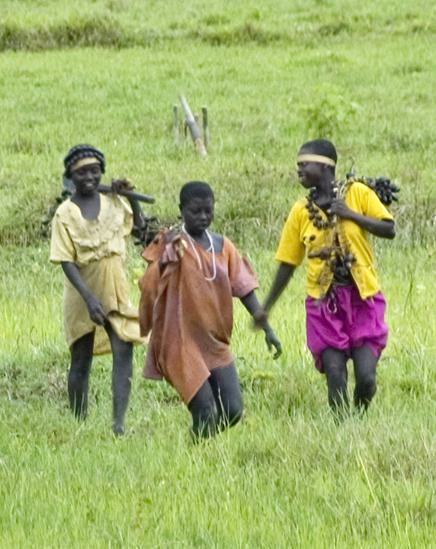
- 16 Jul 2025
In News:
The 16th Census of India, scheduled for 2026–27, will include a special effort to enumerate the six main indigenous tribes of the Andaman and Nicobar Islands, including the Jarawa, one of the world’s oldest surviving tribal groups.
About the Jarawa Tribe:
- Status: Recognized as a Particularly Vulnerable Tribal Group (PVTG).
- Location: Reside in Middle and South Andaman Islands, primarily in dense tropical forests and coastal zones.
- Lifestyle:
- Nomadic hunter-gatherers living in small groups of 40–50.
- Depend on forest produce, marine fishing, and traditional medicine.
- Exhibit robust health, with low incidence of lifestyle diseases.
- Cultural Characteristics:
- Minimal attire suited to the climate.
- Known for strong territorial identity and historical resistance to outsiders.
- Maintain a natural diet and traditional healing practices.
Population Trends:
- 1998 Estimate: ~260 individuals (based on limited contact).
- 2011 Census: 380 individuals (out of 28,530 STs in A&N Islands).
- 2025 Official Estimate: 647 individuals.
- Increase attributed to improved healthcare, trust-building, and non-intrusive welfare policies.
Government Interventions & Welfare Initiatives:
- Healthcare: Preventive medical support (measles, hepatitis, malaria) provided without interfering in traditional practices.
- Welfare Access: Increased interaction since 1998 has enabled better outreach, aiding accurate population tracking.
- PM-JANMAN Scheme: Under the Pradhan Mantri Janjati Adivasi Nyaya Maha Abhiyan, 191 PVTG individuals have been identified in the islands for targeted welfare.
Challenges & Ethical Considerations:
- Andaman Trunk Road (ATR): Provides physical access but raises concerns of cultural intrusion.
- Expert Opinion: Minimum intervention is essential for preserving the Jarawa way of life. Trust and respect for autonomy remain key.
16th Census of India: Timeline & Relevance:
- Reference Dates:
- October 1, 2026: Snow-bound areas (e.g., Ladakh, A&N Islands).
- March 1, 2027: Rest of India.
- Special Feature: Will include caste enumeration, the first since 1931.
- Jarawa Inclusion: Officials expect smooth access to PVTGs like the Jarawas due to longstanding trust and contact.
Exercise Talisman Sabre 2025
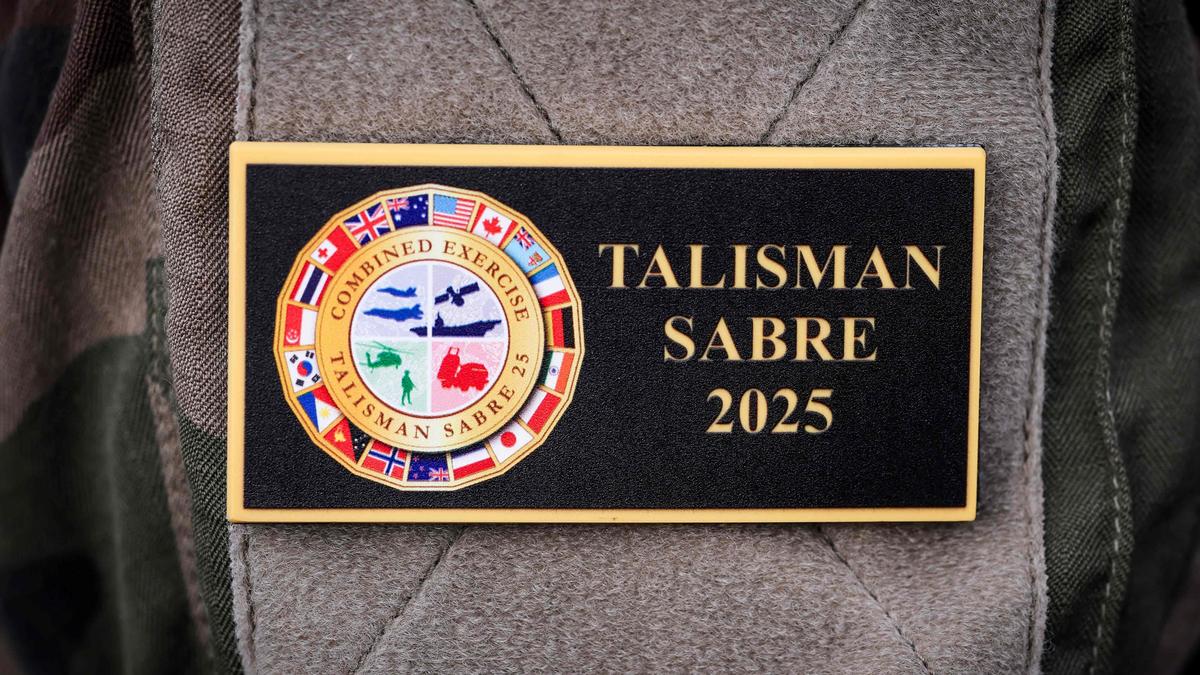
- 16 Jul 2025
In News:
India is participating in Exercise Talisman Sabre 2025, a major multinational military exercise led by Australia and the United States, now in its 11th edition. The exercise commenced on July 13, 2025, and includes over 35,000 military personnel from 19 nations.
About Exercise Talisman Sabre:
- Origin & Nature:
- A biennial bilateral military exercise between Australia and the United States since 2005.
- Designed to promote a free and open Indo-Pacific and strengthen interoperability and strategic partnerships among allies.
- Multinational Participation (2025):
- Participants: Australia, United States, India, Canada, Fiji, France, Germany, Indonesia, Japan, Netherlands, New Zealand, Norway, Papua New Guinea, Philippines, Republic of Korea, Singapore, Thailand, Tonga, United Kingdom.
- Observers: Malaysia and Vietnam.
- Geographical Scope: Exercises are being conducted across Queensland, Northern Territory, Western Australia, New South Wales, Christmas Island, and for the first time, in Papua New Guinea (outside Australian territory).
Significance for India and the Indo-Pacific:
- Strengthens India's defence diplomacy and military interoperability with Indo-Pacific allies.
- Reinforces commitment to collective security and rules-based international order.
- Enhances India's operational exposure in multidomain warfighting scenarios alongside major powers.
Who is an ‘Ordinarily Resident’?
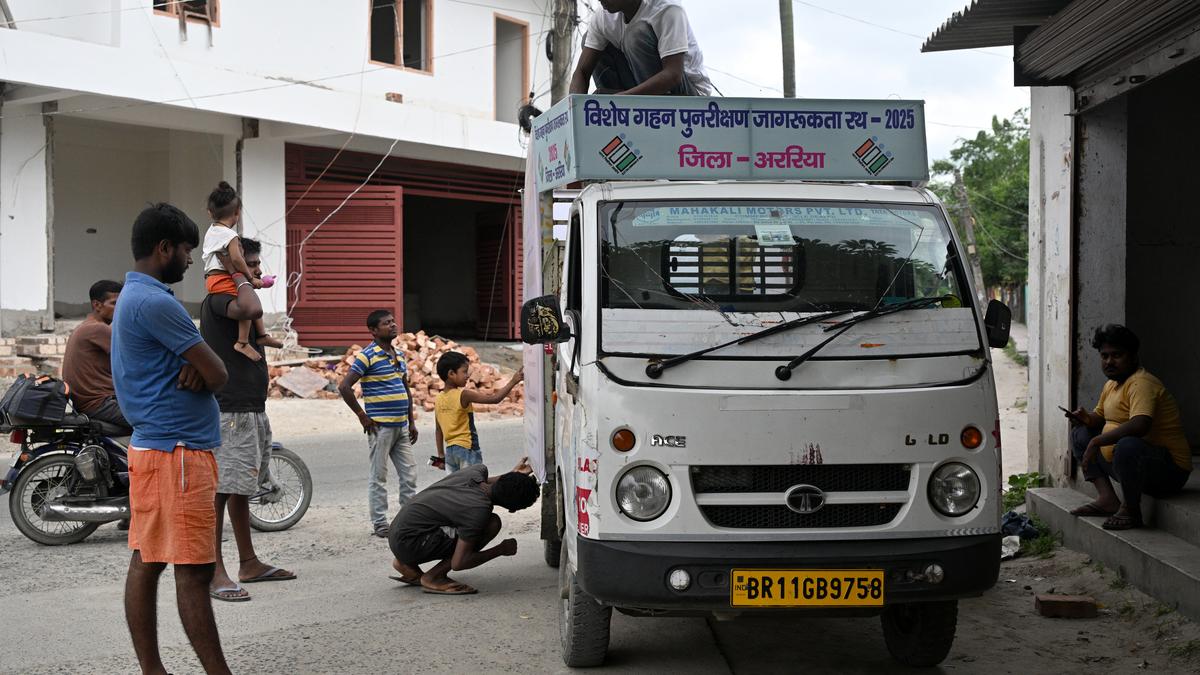
- 16 Jul 2025
In News:
The Election Commission of India (ECI) has initiated a Special Intensive Revision (SIR) of electoral rolls in Bihar, sparking debate over the eligibility of migrant workers and the interpretation of ‘ordinarily resident’ under electoral law.
Legal Basis of ‘Ordinarily Resident’
- Representation of the People Act, 1950:
- Section 19: Only persons ordinarily resident in a constituency are eligible for enrolment in its electoral roll.
- Section 20: Defines ‘ordinarily resident’ and clarifies that:
- Ownership or possession of a house alone does not qualify one as ordinarily resident.
- A person temporarily absent from their usual place of residence (due to work, travel, etc.) continues to be ordinarily resident there.
- Certain categories are deemed to be ordinarily resident in their home constituency even if posted elsewhere:
- Members of armed forces,
- State police serving outside their State,
- Central government employees posted abroad,
- Persons holding constitutional offices declared by the President in consultation with the ECI,
- Their spouses are also covered.
- Section 20A (added in 2010):
- Allows Non-Resident Indians (NRIs) to register and vote from the address mentioned in their passport, even if they reside abroad long-term.
Rules Governing Electoral Rolls
- The Registration of Electors Rules, 1960 (RER):
- Notified by the Central Government in consultation with the ECI.
- Govern the preparation, revision, and correction of electoral rolls.
- Electoral Registration Officers apply and verify the concept of ‘ordinarily resident’ during the enrolment process.
Judicial Interpretation
- Gauhati High Court (Manmohan Singh Case, 1999):
- Defined ‘ordinarily resident’ as one who is habitually and permanently living in a place.
- The person must intend to reside there, and society must reasonably accept them as a resident.
3I/Atlas: Third Interstellar Object Discovered
- 16 Jul 2025
In News:
Scientists have confirmed the discovery of 3I/Atlas, the third-known interstellar object, which could be over 7 billion years old — predating the Solar System by nearly 3 billion years. It was detected on July 1, 2025, by the Asteroid Terrestrial-impact Last Alert System (ATLAS) telescope in Río Hurtado, Chile.
Key Features:
- Interstellar Origin: 3I/Atlas is not gravitationally bound to the Sun and follows a hyperbolic trajectory, indicating it entered the Solar System from interstellar space.
- High Speed: It is traveling at approximately 60 km/s — too fast to be retained by the Sun’s gravity at a distance of 670 million km from the Sun.
- Current Location: The object is now roughly 917 million km from Earth, close to the orbit of Jupiter.
- Age Estimation: Estimated to be around 7 billion years old, making it potentially the oldest comet ever observed.
Understanding Interstellar Objects
- Definition: Interstellar objects are celestial bodies that originate outside the Solar System and pass through it without being gravitationally bound to the Sun.
- Known Interstellar Objects:
- 1I/?Oumuamua (2017)
- 2I/Borisov (2019)
- 3I/Atlas (2025)
How do scientists confirm Interstellar Origin?
- Trajectory Analysis: Objects within the Solar System follow closed elliptical orbits. Interstellar objects exhibit open hyperbolic orbits — they have a perihelion (closest point to the Sun) but no aphelion (no return).
- Velocity Measurement: A high velocity at a great distance from the Sun, such as with 3I/Atlas, suggests that the object was not accelerated within our Solar System and must have originated externally.
- Example: At 670 million km from the Sun, 3I/Atlas’s speed of 60 km/s indicates a hyperbolic escape path, unaffected significantly by the Sun’s gravitational pull.
Why is it Significant?
- Clues to Alien Planetary Systems: The chemical composition of interstellar objects offers insights into the formation conditions of other star systems.
- Rare Opportunity: These objects provide a direct sample of exoplanetary material, potentially long before space missions can reach other star systems.
- Scientific Value: If rich in ices, as expected in long-distance comets, it implies ejection from a cold, outer region of a distant planetary system—likely influenced by large planets like Jupiter or Neptune analogues.
e-Truck Incentive Scheme
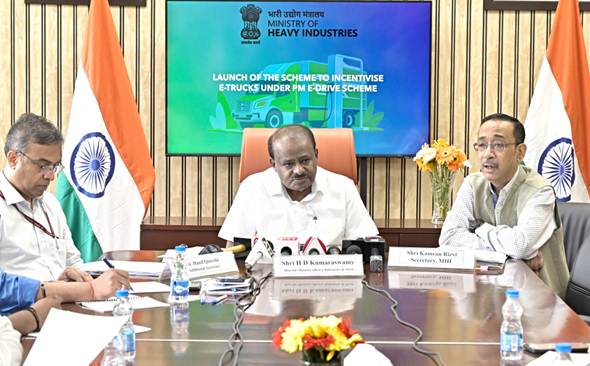
- 15 Jul 2025
In News:
The Government of India, under the PM E-DRIVE initiative, has launched the country’s first dedicated financial incentive scheme for electric trucks (e-trucks). Spearheaded by the Ministry of Heavy Industries (MHI) and launched by Union Minister H.D. Kumaraswamy, the initiative is a key component of India's push toward green freight mobility, net-zero emissions by 2070, and cleaner urban air quality.
Key Features of the Scheme
- Scope & Objective: Aimed at reducing emissions from the freight sector, lowering logistics costs, and encouraging indigenous e-truck manufacturing under Atmanirbhar Bharat.
- Target Vehicle Categories:
- N2 Category: Trucks with Gross Vehicle Weight (GVW) between 3.5 to 12 tonnes
- N3 Category: Trucks with GVW above 12 tonnes and up to 55 tonnes (In case of articulated vehicles, only the N3-category puller tractor is eligible.)
- Eligibility Conditions:
- Mandatory scrapping of old diesel trucks for availing incentives
- Battery warranty: 5 years or 5 lakh km
- Vehicle and motor warranty: 5 years or 2.5 lakh km
- Incentives Structure:
- Maximum incentive: ?9.6 lakh per e-truck
- Incentive amount based on GVW
- Disbursal: Upfront reduction in purchase price; reimbursed to OEMs via PM E-DRIVE portal (first-come, first-served)
Implementation Timeline and Financial Outlay
- Duration: October 1, 2024 – March 31, 2026
- Budget:
- ?500 crore earmarked for e-trucks within an overall outlay of ?10,900 crore under PM E-DRIVE
- Dedicated ?100 crore allocation for 1,100 e-trucks registered in Delhi to combat air pollution
Wider PM E-DRIVE Ecosystem (formerly EMPS-2024)
- EV Categories Covered:
- Electric 2-Wheelers: Incentive of ?5,000/kWh (capped at ?10,000 in Year 1, ?5,000 in Year 2)
- Electric 3-Wheelers: ?25,000 in Year 1, ?12,500 in Year 2
- L5 Cargo EVs: ?50,000 in Year 1, ?25,000 in Year 2
- E-buses and e-ambulances: Covered under future extensions
- e-Vouchers: Introduced for digital verification and incentive tracking. One vehicle per Aadhaar; required for OEM reimbursement.
- Charging Infrastructure: The scheme promotes setting up EV Public Charging Stations (EVPCS) in high EV penetration cities and along major highways.
Strategic Importance and Impact
- Environmental: Diesel trucks constitute only 3% of the vehicle fleet but contribute to 42% of transport-related GHG emissions.
- Deployment Goal: Support for 5,600 e-trucks across India
- Sectoral Focus: Logistics, cement, steel, and port sectors
- Industry Participation: OEMs like Tata Motors, Ashok Leyland, Volvo Eicher are actively engaged
- CPSE Involvement: SAIL to procure 150 e-trucks and electrify 15% of hired vehicles.
Sanchar Mitra Scheme

- 15 Jul 2025
In News:
The Sanchar Mitra Scheme, launched by the Department of Telecommunications (DoT), Ministry of Communications, is a nationwide volunteer-based initiative aimed at promoting digital literacy, telecom safety, and cybersecurity awareness among citizens.
Initially piloted in select institutions, the scheme has now been scaled up nationally due to its successful outreach and impact.
Key Highlights:
- Who are Sanchar Mitras?
- Selected university student volunteers from streams such as telecom, electronics, computer science, and cybersecurity who act as digital ambassadors to spread awareness at the grassroots level.
- Core Objectives:
- Promote digital safety and cyber hygiene
- Raise awareness on cyber frauds, EMF radiation concerns, and responsible mobile usage
- Bridge the communication gap between telecom services and citizens
- Training & Exposure: Sanchar Mitras receive specialized training from:
- National Communications Academy–Technology (NCA-T)
- DoT Media Wing: Training covers topics such as 5G, 6G, Artificial Intelligence, Cybersecurity, and telecom technologies.
- Community Engagement: Volunteers organize awareness campaigns, collaborate with NGOs, and engage in door-to-door outreach to promote informed digital behavior.
- Assessment & Incentives: Participants are evaluated on innovation, consistency, and outreach impact. Top performers receive:
- Internship opportunities
- Involvement in national telecom projects
- Invitations to forums like the India Mobile Congress
- Participation in International Telecommunication Union (ITU) events
Recent Developments:
- The first expanded rollout was initiated in Assam, where DoT partnered with 18 top engineering institutions including IIT, IIIT, and NIT.
- Chaired by senior DoT officials, sessions in BSNL Bhawan, Guwahati, introduced the scheme and invited collaboration from academic institutions.
Significance for India:
- Digital Inclusion: Empowers citizens to participate securely in the digital ecosystem.
- Youth Engagement: Mobilizes Yuva Shakti as a force for nation-building and technological awareness.
- Cybersecurity Shield: Acts as a grassroots defense against increasing cyber threats and misinformation.
- Alignment with National Priorities: Supports India’s vision of leadership in the 4 Ds – Democracy, Demography, Digitization, and Delivery.
Astra Missile
- 15 Jul 2025
In News:
The Astra missile, developed by the Defence Research and Development Organisation (DRDO), is India’s first indigenous Beyond-Visual-Range Air-to-Air Missile (BVRAAM). Recently, the Indian Air Force (IAF) and DRDO successfully flight-tested the missile from a Sukhoi-30 MKI fighter jet off the coast of Odisha.
Key Features:
- Range: Over 100 km, enabling engagement of distant aerial targets.
- Speed: Capable of flying at speeds exceeding Mach 4.
- Operational Ceiling: Effective up to 20 km altitude.
- Seeker: Equipped with a fully indigenous Radio Frequency (RF) Seeker, enhancing precision targeting.
- Guidance System: State-of-the-art navigation and guidance technologies ensure high accuracy.
- All-weather Capability: Operable in day and night across diverse weather conditions.
Recent Tests:
- Conducted against high-speed unmanned aerial targets at varying ranges and conditions.
- Achieved pinpoint accuracy in both launches.
- All subsystems, including the RF seeker and tracking systems, functioned flawlessly.
- Tests were conducted at the Integrated Test Range (ITR), Chandipur.
Strategic Significance:
- Boosts India’s air-to-air combat capability.
- Reduces dependency on foreign missile systems.
- Supports the vision of Aatmanirbhar Bharat in defence technology.
- Over 50 Indian public and private sector industries, including Hindustan Aeronautics Limited (HAL), contributed to its development.
Lake Turkana Basin
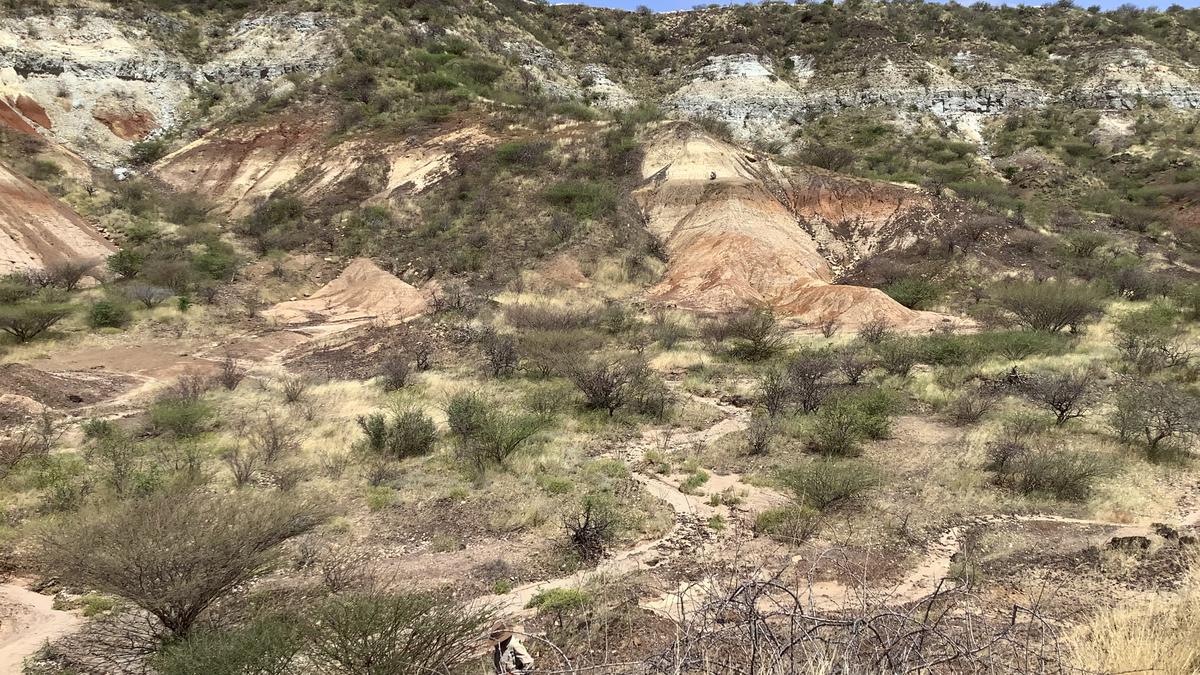
- 15 Jul 2025
In News:
For the first time, scientists have successfully extracted and analyzed 18–24 million-year-old enamel proteins from extinct mammal fossils—pushing the frontiers of biomolecular preservation and reshaping our understanding of mammalian evolution. The groundbreaking findings were published in Nature (July 2025) and draw from fossils found in Lake Turkana Basin (Kenya) and the Haughton Impact Crater (Canada's High Arctic).
Key Highlights:
What was Discovered?
- Enamel proteins, trapped in the dense tooth enamel of extinct mammals, were recovered from fossils dating back 18–24 million years.
- These proteins are now the oldest biomolecular sequences ever recovered, exceeding the time limits of ancient DNA (which typically degrades within 1 million years).
Significance of Enamel Proteins:
- Enamel—being the hardest biological substance—acts as a molecular vault, shielding proteins from environmental degradation.
- These ancient proteins provide crucial phylogenetic information, even in hot tropical zones like Lake Turkana, where preservation was previously thought improbable.
Methodology:
- Researchers extracted structural enamel proteins like amelogenin, enamelin, and ameloblastin.
- Advanced mass spectrometry and rigorous contamination controls ensured data integrity.
- Over 1,000 peptides and 7 different enamel proteins were recovered from a 21–24 million-year-old rhinoceros tooth in the Arctic.
- Diagenetic alterations (e.g., oxidation, glycation) were used as authenticity markers.
Site-Wise Discoveries:
Lake Turkana Basin (Kenya):
- Fossils from a hot, arid region yielded enamel proteins up to 18 million years old.
- Demonstrated exceptional preservation due to fluviodeltaic sedimentation, which allowed rapid burial and protection from oxygen and heat.
- The Turkana Basin is a major palaeontological site in Eastern Rift Valley and home to species like proboscideans, rhinocerotids, hippopotamids, and hominoids.
- Enamel samples ranged from 1.5 to 29 million years old.
- Turkana Lake, the world’s largest permanent desert lake and a UNESCO World Heritage Site, lies in this region.
Haughton Impact Crater (Nunavut, Canada):
- Ancient enamel from a permafrost site enabled recovery of 21–24 million-year-old proteins.
- The site was once a temperate lake, aiding preservation under low oxygen (anoxic) conditions.
- Researchers reconstructed rhinocerotid evolution, showing Epiaceratherium diverged before the Elasmotheriinae-Rhinocerotinae split, revising long-held fossil-based phylogenies.
Scientific Implications:
|
Aspect |
Enamel Proteins |
Ancient DNA |
|
Age limit |
>20 million years |
<1 million years |
|
Preservation |
High in enamel |
Poor in hot climates |
|
Resolution |
Useful for deep-time splits |
High for closely related species |
|
Data Type |
Protein sequence |
Genetic sequence |
|
Application |
Tree of life reconstruction, evolutionary history |
Genome mapping, ancestry |
Agricultural Monitoring and Event Detection (AMED) API
- 15 Jul 2025
In News:
Google has introduced a set of artificial intelligence (AI)-based innovations to advance India’s agricultural practices and enhance the cultural and linguistic relevance of global AI models.
Agricultural Monitoring and Event Detection (AMED) API
- Launched by: Google DeepMind and Google’s Partnerships Innovation Team
- Collaborators: TerraStack, IIT-Kharagpur, and other local partners
- Foundation: Built on the Agricultural Landscape Understanding (ALU) API launched in 2023
- Key Features:
- AI-Based Field Monitoring: Offers field-level insights using satellite imagery and deep learning to monitor crops and agricultural activity.
- Crop-Specific Data: Provides details on crop type, season, field size, and three years of historical cropping and land-use data.
- Event Detection: Detects agricultural changes at individual field levels, improving yield prediction and input management.
- Biweekly Updates: Data refreshed every two weeks to ensure real-time agricultural monitoring.
- Open Access for Innovation: Available for integration by agri-tech startups, financial institutions, and government bodies to support data-backed rural lending, climate adaptation, and sustainable farming practices.
- Objectives and Utility:
- Empower agriculture stakeholders with granular, real-time intelligence.
- Facilitate precision agriculture by tailoring support for soil, water, and climatic needs.
- Strengthen India's resilience to climate-related risks and promote informed policymaking.
- Help financial services design location-specific rural credit systems.
Amplify Initiative: Cultural and Linguistic Localization of AI
Google is also working to enrich AI systems with deeper understanding of India’s diversity through the Amplify Initiative, piloted earlier in Sub-Saharan Africa.
Indian Collaboration:
- Partner Institution: IIT-Kharagpur
- Goal: Create hyperlocal annotated datasets in multiple Indic languages related to healthcare, safety, and social issues.
- Aims to ensure that Large Language Models (LLMs) are better aligned with India’s cultural plurality and linguistic complexity.
Global Impact:
- Builds on success in Africa, where 8,000+ queries in 7 languages were developed by 155 experts to address issues such as chronic illness and misinformation.
INS Nistar

- 14 Jul 2025
In News:
In a significant stride towards self-reliance in defence manufacturing under the Aatmanirbhar Bharat initiative, the Indian Navy has inducted INS Nistar, its first indigenously designed and built Diving Support Vessel (DSV). Developed by Hindustan Shipyard Limited (HSL), Visakhapatnam, INS Nistar enhances India’s capabilities in deep-sea rescue, submarine emergency response, and underwater operations, placing India among a select group of nations with such advanced maritime assets.
Key Features and Capabilities
- Size and Endurance:
- Length: ~118–120 meters
- Displacement: Over 10,000 tonnes
- Endurance: Capable of operating for over 60 days at sea
- Diving and Rescue Capabilities:
- Equipped for saturation diving up to 300 meters and side diving stage operations up to 75 meters
- Integrated with Remotely Operated Vehicles (ROVs) for diver monitoring and salvage missions up to 1000 meters below sea level
- Serves as the Mother Ship for the Deep Submergence Rescue Vehicle (DSRV), crucial for submarine crew evacuation in emergencies
- Medical and Operational Infrastructure:
- Includes an 8-bed hospital, ICU, operation theatre, and hyperbaric chambers for diver treatment and recovery
- Fitted with a 15-tonne subsea crane, helicopter landing deck, and Side Scan SONAR for multi-role logistics and salvage operations
- Navigation and Control: Integrated Dynamic Positioning System (DPS) ensures precision during complex underwater missions
Indigenous Content and Industrial Participation
- Indigenous Content: Approximately 75–80%
- Over 120 Indian MSMEs contributed to the vessel’s construction
- Compliant with Indian Register of Shipping (IRS) classification standards
Strategic and Symbolic Significance
- Bridges critical capability gaps in submarine rescue, deep-sea salvage, and maritime disaster response
- Strengthens India’s strategic posture in the Indian Ocean Region (IOR), ensuring rapid and self-reliant response to undersea emergencies
- Reinforces India’s position as an emerging blue water navy
- Symbolically revives the legacy of the erstwhile Soviet-origin INS Nistar (commissioned in 1971), reaffirming continuity and progress in naval capabilities
TALASH Initiative

- 14 Jul 2025
In News:
The National Education Society for Tribal Students (NESTS), under the Ministry of Tribal Affairs, in collaboration with UNICEF India, has launched TALASH — Tribal Aptitude, Life Skills and Self-Esteem Hub — a first-of-its-kind national initiative aimed at fostering the holistic development of tribal students enrolled in Eklavya Model Residential Schools (EMRSs).
Launched in July 2025, TALASH reflects a focused effort to promote self-awareness, life skills, and career clarity among tribal youth across India. The initiative aligns with the vision of the National Education Policy (NEP) 2020, emphasizing inclusive, equitable, and holistic education.
Key Objectives:
- Support all-round development of over 1.38 lakh EMRS students across 28 States and 8 Union Territories.
- Strengthen academic learning, while building life skills, self-esteem, and career readiness.
- Bridge educational and psychological gaps for tribal youth, especially in remote and underprivileged areas.
Core Features of TALASH
- Digital Self-Discovery Platform: TALASH is an innovative digital portal that equips students with tools for career planning, aptitude assessment, and personal development.
- Psychometric Assessments: Inspired by NCERT’s Tamanna initiative, it offers a standardized aptitude test to identify students’ strengths, interests, and potential career paths.
Students are provided with Career Cards based on test results. - Career Counselling Support: Helps students make informed choices by aligning their aspirations with personal aptitude and career opportunities.
- Life Skills & Self-Esteem Modules: Includes interactive content to build problem-solving abilities, emotional intelligence, communication skills, and self-confidence.
- E-Learning for Educators: Offers a dedicated teacher portal for capacity building, enabling educators to mentor and support students effectively.
Implementation and Outreach
- The program is being rolled out in phases, starting in select EMRSs for smooth execution.
- So far, 189 teachers from 75 EMRSs have been trained as master trainers.
- By the end of 2025, TALASH aims to be active in all EMRSs nationwide.
Institutional Backing and Vision
- NESTS: An autonomous body under the Ministry of Tribal Affairs, responsible for the establishment and administration of EMRSs to ensure quality education for tribal students.
- UNICEF India: Brings global expertise in child development, focusing on equitable access, well-being, and digital empowerment.
Earth Intelligence

- 14 Jul 2025
In News:
In a major forecast shaping the future of data-driven decision-making, Gartner Inc. estimates that Earth Intelligence will emerge as a $20 billion industry between 2025 and 2030, with enterprise spending surpassing government and military investments by the end of the decade. This signals a pivotal shift in how space-based Earth observation data is being transformed into actionable insights across industries.
What is Earth Intelligence?
Earth Intelligence refers to the application of artificial intelligence (AI) to Earth observation data—mainly derived from satellite imagery, remote sensors, and complementary datasets like social, economic, and policy data—to generate domain-specific, actionable insights.
It involves:
- Data collection: Satellite and sensor-based Earth observation.
- Data transformation: Converting raw data into tailored formats.
- Insight generation: Using AI, analytics, and modeling to support business and policy decisions.
This integrated approach also increasingly draws on local and Indigenous knowledge, enhancing its relevance for climate resilience, urban planning, resource management, and disaster response.
Key Applications
Gartner highlights several real-world use cases:
- Disaster Response: Identifying fallen trees on railway lines post-storms.
- Industrial Monitoring: Tracking metal refinery temperatures to gauge global supply chains.
- Urban Analytics: Counting vehicles to study traffic and consumer behavior.
- Trade Analysis: Monitoring sea cargo movement to assess global shipping trends.
Trends and Projections
- In 2024, less than 15% of Earth Intelligence spending came from the private sector.
- By 2030, enterprises are expected to contribute over 50% of total spending—outpacing government and military usage.
- The annual revenue from Earth Intelligence is projected to grow from $3.8 billion (2025) to $4.2 billion (2030).
- The cumulative revenue opportunity for tech and service providers is estimated at $20 billion (2025–2030).
Polycyclic Aromatic Hydrocarbons (PAHs)

- 14 Jul 2025
In News:
In a significant development in astrochemistry, researchers from Australia, Sweden, and the UK have discovered how polycyclic aromatic hydrocarbons (PAHs)—complex organic molecules—can survive in the harsh environment of space, particularly within the Taurus Molecular Cloud 1 (TMC1). Their findings offer fresh perspectives on the origins of life and the chemical evolution of the universe.
What are PAHs?
Polycyclic Aromatic Hydrocarbons (PAHs) are flat, ring-shaped molecules composed of carbon and hydrogen. They are believed to constitute up to one-fifth of all carbon in interstellar space. While on Earth PAHs are typically formed through the incomplete combustion of organic matter such as fossil fuels and biomass, in space they are thought to be delivered by meteors and may have contributed to the early building blocks of life on Earth.
Astrochemical Puzzle: PAHs in TMC1
TMC1 is a cold, dense molecular cloud located about 430 light-years away in the Taurus constellation, composed primarily of molecular hydrogen (H?) along with dust, plasma, and organic compounds like ammonia (NH?) and carbon monoxide (CO). Despite constant exposure to high-energy starlight, which should destroy fragile molecules, small, closed-shell PAHs—those with paired electrons—are found in unexpectedly high concentrations in TMC1.
Scientific Breakthrough: The Indenyl Cation (C?H??)
To investigate this anomaly, researchers focused on a fragment of a PAH molecule known as the indenyl cation (C?H??). This molecule was studied under ultra-cold conditions at Stockholm University’s DESIREE facility, which allows ions to circulate without collisions at temperatures near –260°C.
Key findings:
- C?H?? ions exhibit an efficient cooling mechanism, enabling them to survive rather than disintegrate.
- The cooling occurs through recurrent fluorescence—where energy is gradually lost as electrons shift between excited and ground states—and infrared emission via molecular vibrations.
- This mechanism is crucial for stabilizing small PAHs (<50 carbon atoms), which have increasingly been detected in space through radioastronomy.
Scientific Significance:
- Validates how organic molecules can survive and grow in interstellar environments.
- Refines astrochemical models of molecular evolution in space.
Implications for the Origin of Life:
- Supports the hypothesis that PAHs delivered by meteors may have seeded early Earth with prebiotic carbon, aiding the emergence of life.
Relevance to Space Research:
- Enhances understanding of interstellar chemistry, useful for missions like James Webb Space Telescope (JWST) and future astrobiology missions.
MALE Drone Procurement
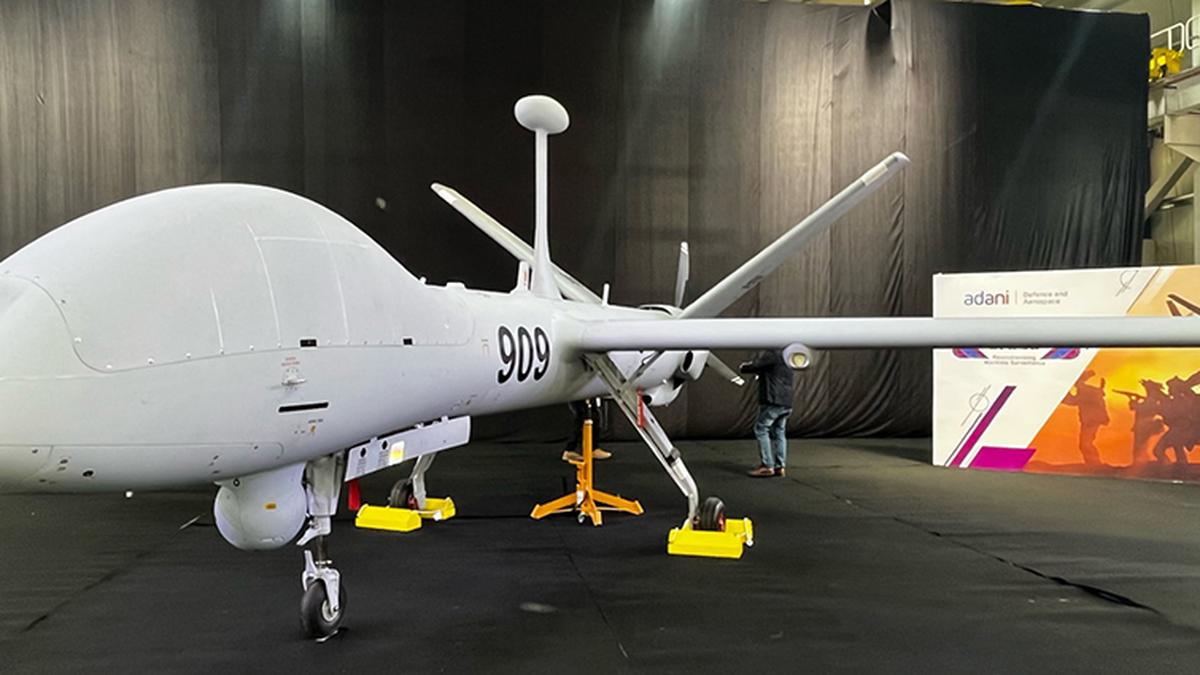
- 14 Jul 2025
In News:
In a significant stride towards self-reliance in defence technology, India has expedited the procurement of 87 Medium Altitude Long Endurance (MALE) drones from domestic manufacturers under the ?20,000 crore initiative, marking a major step in strengthening border surveillance and operational readiness.
What are MALE Drones?
MALE (Medium Altitude Long Endurance) drones are unmanned aerial vehicles (UAVs) capable of flying at altitudes of up to 35,000 feet and sustaining flight for over 30 hours. These drones are equipped for Intelligence, Surveillance, and Reconnaissance (ISR) and can undertake limited combat missions.
Key Features
- Endurance: Operational capacity exceeds 30 hours.
- Altitude Range: Effective at 35,000 feet or higher.
- Payload: Equipped with Electro-Optical/Infrared (EO/IR) cameras, radar systems, and combat modules.
- Real-time ISR: Provides persistent surveillance over diverse terrain.
- Remote Operations: Ground stations with secure communication links manage operations.
- Indigenous Content: Over 60% of components are locally manufactured, promoting import substitution.
Strategic Applications
- Border and Maritime Surveillance: Enhances India’s ability to monitor land borders with Pakistan and China, and maritime boundaries in the Indian Ocean Region.
- Tri-Service Integration: These drones will be deployed across the Army, Navy, and Air Force, improving joint situational awareness.
- Counter-Insurgency Support: Useful in operations in Naxal-affected and insurgency-prone areas, providing tactical aerial intelligence.
- Disaster Relief and Mapping: Can aid in real-time mapping and coordination during natural disasters and humanitarian crises.
Strategic Importance
- Fills the capability gap between smaller tactical UAVs and high-altitude surveillance drones like the MQ-9B Sea/ Sky Guardians.
- Replaces India’s earlier dependence on Israeli UAVs (e.g., Heron drones), boosting the ‘Make in India’ initiative in defence manufacturing.
- Enhances 24×7 real-time surveillance, thereby strengthening national security architecture.
Extended Range Anti-Submarine Rocket (ERASR)
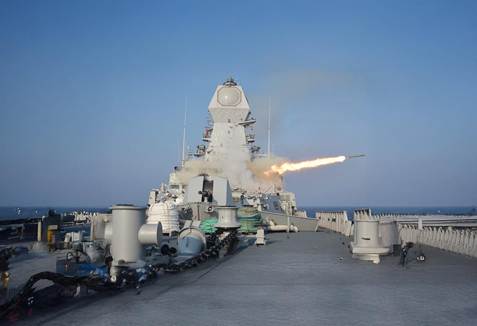
- 13 Jul 2025
In News:
India recently conducted successful user trials of the Extended Range Anti-Submarine Rocket (ERASR) from INS Kavaratti, marking a significant milestone in strengthening the country’s anti-submarine warfare (ASW) capabilities through indigenously developed technologies.
What is ERASR?
The ERASR is a state-of-the-art anti-submarine rocket system designed to neutralize hostile submarines from Indian naval warships. It is specifically intended for launch from Indigenous Rocket Launchers (IRLs) onboard Indian Navy ships.
- Developed by: Defence Research and Development Organisation (DRDO), specifically the Armament Research & Development Establishment (ARDE), Pune, in collaboration with the High Energy Materials Research Laboratory and Naval Science & Technological Laboratory.
- Production partners: Bharat Dynamics Limited (Hyderabad) and Solar Defence & Aerospace Ltd. (Nagpur).
Key Features
- Twin Rocket Motor System: Enables engagement of both short- and long-range submarine targets with high accuracy and consistency.
- Electronic Time Fuze: Fully indigenously developed to ensure precise detonation near underwater threats.
- High Operational Reliability: Demonstrated through consistent warhead detonation and fuze performance.
- Launch Compatibility: Designed to be fired from frontline warships equipped with Indian-made rocket launchers.
Highlights of User Trials
- Conducted from: INS Kavaratti under simulated maritime combat conditions.
- Number of Rockets Tested: 17
- Parameters Evaluated:
- Range performance
- Fuze timing reliability
- Warhead detonation effectiveness
- Outcome: All trial objectives were met; system demonstrated full battlefield readiness.
Significance
- Strengthens India’s ASW capabilities in the Indian Ocean Region, a vital strategic space.
- Boosts Atmanirbharta in defence by reducing reliance on foreign imports.
- Economically efficient, as the scalable domestic production replaces high-cost foreign systems.
- Reflects DRDO’s technological maturity in delivering mission-ready, indigenous defence solutions.
Optical Atomic Clock
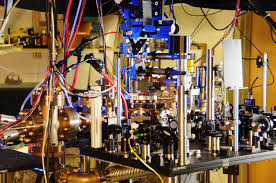
- 13 Jul 2025
In News:
In a landmark advancement, an international team of 65 scientists from six countries conducted the world’s largest and most accurate optical atomic clock comparison across three continents. This is a major step towards redefining the SI unit of time — the second — using optical atomic clocks instead of current caesium-based clocks.
Current Definition of a Second
- Defined since 1967 by the International System of Units (SI):
One second is the time it takes for 9,192,631,770 cycles of microwave radiation emitted during the transition between two hyperfine levels of the ground state of a caesium-133 atom.
- In India, the National Physical Laboratory (NPL) in New Delhi maintains the time standard using five caesium atomic clocks, disseminating the output via INSAT satellites, telecom signals, and fibre links.
Why Redefine the Second?
Limitations of Caesium Clocks:
- Frequency: 9.19 billion Hz (microwave range).
- Stability: Drifts by 1 second every 300 million years.
- Insufficient for the growing precision demands of:
- Global Positioning Systems (GPS, NavIC, Galileo)
- Climate science (e.g., measuring gravity changes due to ice loss)
- Radio astronomy (e.g., black hole imaging)
- Quantum technologies and space navigation
Optical Atomic Clocks: The Next Time Standard
Advanced atomic clocks that use visible light (optical frequencies) rather than microwaves to measure atomic transitions, allowing much higher precision.
Atoms Used:
- Strontium-87 (Sr)
- Ytterbium-171 (Yb)
- Charged Ytterbium Ions (Yb? E2, Yb? E3)
- Charged Strontium-88 (Sr?)
- Indium-115 ions (In?)
Working Principle:
- Atoms are held in optical lattices or ion traps.
- A laser, tuned to the atom’s natural frequency, stimulates atomic transitions.
- The resulting oscillations — which occur hundreds of trillions of times per second — are counted to define one second.
Superior Attributes:
- Frequency range:
- Strontium: 429 trillion Hz
- Ytterbium: 642 trillion Hz (≈ 10,000 times greater than caesium clocks)
- Unmatched stability: Drift of 1 second in 15 billion years in some cases
- Precision: Agreement between clocks within 10?¹? to 10?¹?, enabling ultra-precise synchronization globally
The Global Clock Comparison: Key Highlights
Objective:
To test whether optical clocks across the world remain synchronized at ultra-high precision, a prerequisite for redefining the SI second.
Experiment Overview:
- Duration: 45 days (Feb 20 – Apr 6, 2022)
- Participants: 10 optical clocks across six countries (Germany, France, Italy, Japan, Finland, UK)
- Atoms used: Sr, Yb, Sr?, Yb? (E2 & E3), In?
- Techniques:
- Optical fibre links between countries
- Advanced GPS method: Integer Precise Point Positioning (IPPP)
- Backups: GPS-based clocks during maintenance downtime
Key Outcomes:
- 38 independent frequency ratios measured — most extensive comparison to date
- 4 new ratios measured for the first time, including:
- Yb?(E3) to Yb
- In? to Yb
- Sr? to Sr
- Sr? to Yb
- Precision Achievements:
- Sr clocks in Germany and France: differed by < 2 × 10?¹?
- In? and Yb?(E3) clocks in Germany: matched within 4.4 × 10?¹?
- Germany–UK clocks: matched within 3 × 10?¹? via GPS, even with downtime
Challenges & Corrections Identified
- Italy’s Yb clock showed a consistent offset of 4 × 10?¹? in GPS-based ratios due to a signal distribution glitch.
- France and Germany’s Sr clocks showed small but real mismatches (~2 × 10?¹?), needing further investigation.
- Error Correlation Matrix: A 38×38 matrix with 242 non-zero correlation coefficients was created to responsibly combine data and avoid double-counting.
Significance for India and the World
- By 2030, optical atomic clocks are expected to officially redefine the second.
- India, through NPL, will need to upgrade infrastructure to remain in sync with the new global standard.
- Enhanced time precision will benefit:
- ISRO’s navigation and deep space programs
- Disaster response using satellite geolocation
- Quantum communication and computing
Catastrophe Bonds (Cat Bonds)
- 13 Jul 2025
In News:
Life insurance is common in India, but disaster risk insurance is not. Low coverage leaves most assets and livelihoods uninsured and vulnerable to loss. Globally, after the late-1990s U.S. hurricanes impacted even re-insurers, catastrophe risk began shifting to financial markets via catastrophe bonds (cat bonds).
What are Catastrophe Bonds (Cat Bonds)?
Catastrophe bonds (cat bonds) are insurance-linked securities (ILS) that convert disaster risks into tradable debt instruments, allowing countries or insurers to transfer the financial burden of natural disasters to capital markets.
- They are high-yield bonds issued by governments or insurance entities (sponsors) via intermediaries like the World Bank or Asian Development Bank.
- In case of a pre-defined disaster event (e.g., a 7.0 magnitude earthquake or 250 km/h cyclone), investors lose part or all of the principal, which is used by the sponsor for relief and reconstruction.
- If no disaster occurs, investors receive attractive coupon payments and their principal is returned at maturity.
- A Special Purpose Vehicle (SPV) is created to manage funds, isolate risks, and ensure legal and financial transparency.
Why Cat Bonds Matter
India is one of the most disaster-prone countries in the world, experiencing regular cyclones, floods, landslides, earthquakes, and forest fires. Despite this:
- Insurance penetration remains low, leaving individual property and livelihoods largely uninsured.
- The fiscal burden of post-disaster recovery typically falls on government budgets, disrupting planned expenditure and long-term development projects.
As a solution, cat bonds offer pre-arranged, parametric-trigger-based disaster financing, enabling faster payouts and risk diversification.
Advantages of Cat Bonds
|
Benefit |
Explanation |
|
1. Fast Payouts |
Unlike conventional insurance, cat bonds disburse funds immediately after a trigger event. |
|
2. Fiscal Resilience |
Shields government budgets from sudden disaster-related shocks. |
|
3. Diversified Risk |
Catastrophic risks are uncorrelated with financial markets, offering true portfolio diversification. |
|
4. Broader Capital Base |
Taps into global capital markets, beyond traditional reinsurance capacities. |
|
5. Encourages Mitigation |
Countries with better disaster preparedness may attract lower premiums. |
Cat bonds also appeal to institutional investors, especially pension funds and hedge funds, seeking returns that diversify portfolio risk away from traditional market-linked assets.
Limitations and Challenges
|
Limitation |
Explanation |
|
Trigger Rigidity |
No payout if the event falls just short of the pre-set parameters (e.g., a 6.5 magnitude quake when 6.6 is the threshold). |
|
Design Complexity |
Requires precise, data-backed modeling; poor design may exclude real risks. |
|
Perception of Waste |
In resource-scarce settings, non-triggered bonds may be seen as wasteful. |
|
High Premiums |
Hazard-prone regions attract higher premiums, potentially reducing cost-effectiveness. |
Transparent design, clear actuarial modelling, and historical comparisons with actual relief costs are critical for effective implementation.
India’s Readiness for Cat Bonds
- Annual Allocation: ?1.8 billion allocated since FY21–22 for disaster mitigation and capacity building shows India’s proactive approach to risk reduction.
- Sovereign Credibility: India’s stable credit rating and large economy make it a credible sponsor for such instruments.
- Hazard Exposure: Increasing frequency and severity of climate-induced disasters makes India a suitable case for cat bond-backed financial risk transfer.
Towards a South Asian Cat Bond
Given shared disaster vulnerabilities, India could spearhead a regional catastrophe bond to cover multiple countries facing similar risks:
Benefits:
- Regional risk pooling reduces premium costs.
- Enables a broader hazard matrix (e.g., cyclones in Bay of Bengal, earthquakes in Himalayan belt).
- Enhances regional financial resilience and climate cooperation.
Possibilities:
- An earthquake bond covering India, Nepal, Bhutan
- A cyclone bond for India, Bangladesh, Sri Lanka, Maldives, Myanmar
Such instruments would address unhedged regional risks and promote disaster preparedness in South Asia.
Global Context
- $180 billion: Approximate global issuance of cat bonds since inception.
- $50 billion: Currently outstanding in global cat bond markets.
- Post-1990s hurricanes in the US catalyzed growth in this market, especially as reinsurers struggled to bear repeated losses.
Bulgaria to join the Eurozone in 2026
- 13 Jul 2025
In News:
Recently, the EU finance ministers officially approved Bulgaria’s adoption of the euro, set to take effect from January 1, 2026. This decision marks Bulgaria as the 21st member of the Eurozone, nearly 19 years after it joined the European Union in 2007. The euro will replace the Bulgarian lev at a fixed exchange rate of 1 euro = 1.95583 lev.
About the Eurozone
- The Eurozone comprises EU member states that have adopted the euro (€) as their official currency and fall under the monetary jurisdiction of the European Central Bank (ECB).
- The euro was introduced in electronic form in 1999 and entered physical circulation in 2002 across 12 initial member states.
- As of now, 20 countries use the euro, with Croatia being the latest entrant in 2023. Bulgaria will become the 21st in 2026.
Maastricht Convergence Criteria
To adopt the euro, EU member states must satisfy strict economic criteria to ensure stability and convergence with the Eurozone economies:
- Price Stability: Inflation should not exceed 1.5 percentage points above the average of the three best-performing EU states.
- Sound Public Finances:
- Fiscal deficit ≤ 3% of GDP
- Gross government debt ≤ 60% of GDP
- Exchange Rate Stability: The national currency must be part of ERM-II (Exchange Rate Mechanism) for at least 2 years without severe fluctuations.
- Interest Rate Convergence: Long-term interest rates must not exceed the average rates of the three lowest-inflation member states by more than 2 percentage points.
After years of delay due to high inflation, Bulgaria recently fulfilled all these criteria, leading to EU and ECB approval.
About Bulgaria
- Location: Southeastern Europe; occupies the eastern Balkan Peninsula.
- Borders:
- North: Romania
- South: Turkey & Greece
- West: Serbia & North Macedonia
- East: Black Sea
- Geography:
- Major mountain ranges: Balkan Mountains, Rhodope Mountains
- Highest peak: Mount Musala (2,925 m) in the Rila Mountains
- Rivers: Danube, Iskur, Maritsa, Struma, Tundzha, Yantra
- Climate: Mostly continental; southern areas influenced by the Mediterranean.
- Capital: Sofia
- Population: ~6.4 million
Eklavya Model Residential Schools
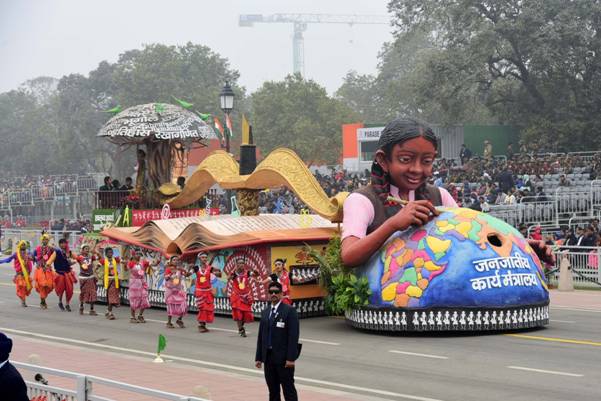
- 13 Jul 2025
In News:
In a significant milestone for tribal education in India, nearly 600 students from Eklavya Model Residential Schools (EMRSs) across 12 States have successfully cleared top national-level entrance exams like IIT-JEE (Mains & Advanced) and NEET 2024, as per the recent performance assessment by the Ministry of Tribal Affairs. This marks a remarkable improvement in academic outcomes for Scheduled Tribe (ST) students in government-run residential schools.
Breakdown of Performance (2024-25):
- IIT-JEE Mains: 218 students qualified; ~25 expected to secure admission in NITs.
- IIT-JEE Advanced: 34 students qualified; 18 likely to get admission into IITs.
- NEET: 344 students qualified; 3 expected to be placed in AIIMS, others in top government medical colleges.
This is the first comprehensive data compilation for EMRS performance in national competitive exams, a sharp increase from earlier years when only a few dozen tribal students achieved similar success.
Government Support & Outreach:
To further encourage these meritorious students, the Ministry of Tribal Affairs is launching a dedicated outreach programme:
- Students will be actively supported and hand-held through the post-matric scholarship application process.
- The Scholarship Division of the Ministry will proactively connect with all qualifying students to ensure they receive their entitled financial support.
- This initiative reflects a paradigm shift from passive support to active facilitation.
Institutional and Policy Framework:
- EMRS is a flagship scheme under the Ministry of Tribal Affairs, aimed at providing quality residential education from Class 6 to 12 to tribal students in remote and underdeveloped regions.
- Introduced in 1998, the programme was revamped in 2018–19 to enhance infrastructure and expand coverage.
- Schools are being established in blocks with >50% tribal population and at least 20,000 tribal persons.
- The government has targeted the establishment of 728 EMRSs by 2026.
- The National Education Society for Tribal Students (NESTS), an autonomous body under the Ministry, is tasked with operationalizing these schools.
Key Features of EMRS:
- Co-educational residential schools from Class VI to XII.
- Follow CBSE curriculum; completely free education.
- Special focus on local tribal culture, sports, and skill development.
- Each school has a capacity of 480 students, with gender parity in enrolment.
- Reservation norms: 10% for non-ST students; 20% under sports quota for ST students excelling in sports.
- Infrastructure includes academic blocks, hostels, teacher accommodations, labs, sports grounds, and cultural activity spaces.
Recent Initiatives and Recognition:
- The success is partly attributed to strategic partnerships with reputed coaching institutes facilitated by NESTS for IIT-JEE and NEET preparation.
- Around 85% of EMRS students belong to Scheduled Tribes, including Particularly Vulnerable Tribal Groups (PVTGs).
- The achievements were acknowledged in a high-level review meeting chaired by Union Tribal Affairs Minister Jual Oram and MoS Durgadas Uikey, who lauded the efforts of teachers, administrators, and students.
Advanced Towed Artillery Gun System (ATAGS)
- 12 Jul 2025
In News:
The Advanced Towed Artillery Gun System (ATAGS) marks a significant milestone in India’s defence modernization. Developed indigenously under the ‘Make in India’ initiative, the system is poised to replace the Indian Army’s ageing artillery with cutting-edge, high-performance firepower.
Key Facts:
- Calibre: 155 mm / 52 calibre
- Maximum Range: Up to 48 km, among the longest for towed artillery globally
- Developer: Defence Research and Development Organisation (DRDO) through ARDE (Pune)
- Production Partners: Bharat Forge Ltd and Tata Advanced Systems Ltd
Project Timeline & Cost:
- Project initiated in 2012 and completed within 12 years
- In March 2025, the Defence Ministry signed contracts worth ?6,900 crore for procurement of 307 ATAGS units and associated 6×6 towing vehicles
- Delivery scheduled over five years
Salient Features of ATAGS:
- Firing Modes: Burst, Intense, and Sustained fire
- Firing Capacity: Up to five rounds per minute, 60 rounds per hour
- Automation: Fully electric gun-laying and ammunition handling, replacing conventional hydraulics for enhanced reliability and reduced maintenance
- Shoot-and-Scoot Capability: Quick repositioning post firing to avoid counter-battery fire
- Rapid Deployment: Becomes operational within 90 seconds
- Mobility: Towed by a 6×6 high mobility vehicle, suitable for desert and mountainous terrain
- Ammunition Compatibility: Supports all 155 mm ammunition types including high-explosive, smoke, illumination, and precision-guided shells
- Minimum Range Advantage: Capable of achieving shortest minimum range at high elevation angles
- Operating Conditions: Designed for extreme climates
Strategic Significance:
- Artillery Modernization: Replaces vintage, smaller-calibre guns, enhancing range, accuracy, and tactical mobility
- Indigenous Content: Over 80% components sourced domestically, contributing to Aatmanirbhar Bharat
- Mission Mode Achievement: Described as an "exemplary mission-mode success" by the Ministry of Defence
- Multi-Sector Collaboration: Joint effort between DRDO, Indian Army, public and private sector manufacturers
Broadcasting Infrastructure and Network Development (BIND) Scheme
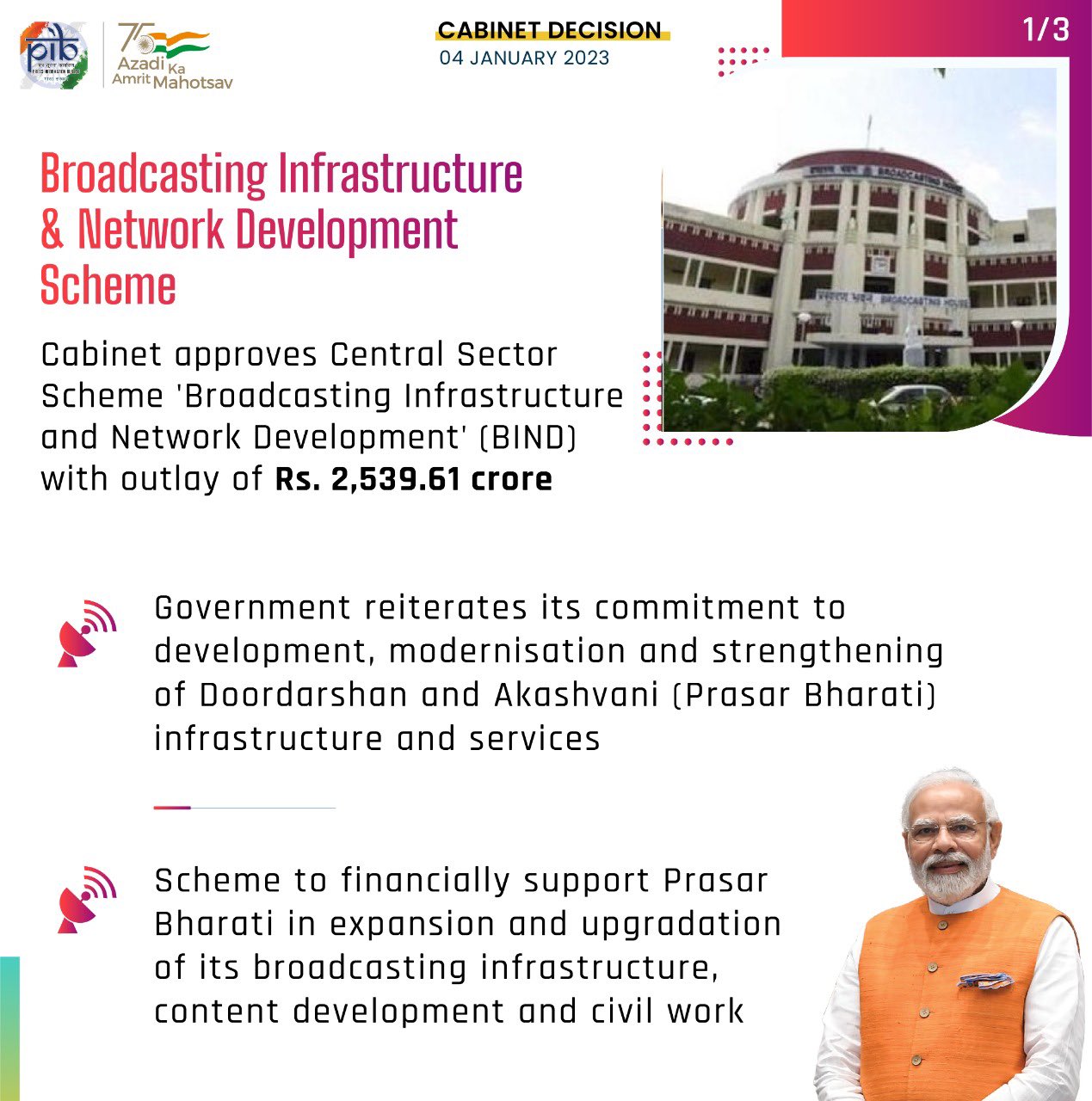
- 12 Jul 2025
In News:
The Government of India has proposed the establishment of a new Akashvani Kendra in Ujjain, Madhya Pradesh, under the Broadcasting Infrastructure and Network Development (BIND) Scheme.
About BIND Scheme
- Type: Central Sector Scheme
- Implementing Agency: Ministry of Information and Broadcasting
- Beneficiary: Prasar Bharati (All India Radio and Doordarshan)
- Objective: To provide financial support for:
- Expansion and modernization of broadcasting infrastructure
- Content development for domestic and international audiences
- Civil works related to Prasar Bharati’s operations
Key Features
- Facilitates technological upgradation of All India Radio (AIR) and Doordarshan (DD)
- Enhances reach in border, Left-Wing Extremism (LWE)-affected, and strategic regions
- Focuses on high-quality and diverse content
- Expands the capacity of the DTH platform, enabling more channels for viewers
- Aims to boost AIR FM coverage from 59% to 66% of India's geographical area and from 68% to 80% of the population
Significance
- Supports regional broadcasting, especially in underserved and aspirational districts
- Promotes cultural preservation and grassroots-level development narratives
- Expected to create indirect employment in manufacturing and broadcast services sectors
- Aids in ensuring last-mile delivery of public communication and information services
The proposed Akashvani Kendra in Ujjain aligns with the broader vision of ‘Viksit Bharat’, focusing on inclusive media access and robust public broadcasting infrastructure. It underscores the growing synergy between the Centre and States to enhance media penetration and communication outreach.
Coartem Baby
- 12 Jul 2025
In News:
In a significant breakthrough in global health, Switzerland has approved Coartem Baby, the first malaria treatment specifically designed for newborns and infants weighing 2–5 kg. Developed by Novartis in collaboration with the Medicines for Malaria Venture (MMV) and international health partners, this pediatric formulation is set to fill a critical treatment gap in malaria-endemic regions.
About Coartem Baby:
- What it is: A pediatric formulation of the antimalarial drug artemether-lumefantrine, customized for babies under 6 months of age (2–5 kg weight range). It is also known as Riamet Baby in some countries.
- Developed by: Novartis, in partnership with MMV, with support from the governments of Switzerland, UK, Netherlands, World Bank, and the Rockefeller Foundation.
- Approval path: Authorized under Swissmedic’s Global Health Products pathway, with fast-track approvals expected in eight African nations: Burkina Faso, Ivory Coast, Kenya, Malawi, Mozambique, Nigeria, Tanzania, and Uganda
Key Features:
- Infant-Specific Design:
- Dose ratio adapted for immature liver function
- Dissolves easily in liquids, including breast milk
- Cherry-flavoured for easier administration
- Public Health Impact:
- Addresses treatment needs of ~30 million newborns born annually in malaria-endemic African countries
- Targets the most vulnerable group previously excluded from clinical trials and vaccination coverage
- Safety Advantage:
- Eliminates the risk of off-label dosing from older children’s formulations
- Offers a clinically proven, age-appropriate treatment alternative
- Access Model: Will be distributed on a largely not-for-profit basis in malaria-endemic countries
Why it matters:
- Fills a Long-standing Treatment Gap: Until now, no antimalarial drug was approved for infants weighing less than 4.5 kg, despite their high risk.
- Impact on Child Mortality:
- As per 2023 data, 597,000 malaria deaths occurred globally, with ~75% among children under 5, mostly in Africa
- The approval of Coartem Baby could drastically reduce mortality in this group
Key Facts about Malaria:
- Cause: Life-threatening illness caused by Plasmodium parasites, transmitted by infected female Anopheles mosquitoes
- Most Dangerous Species:
- Plasmodium falciparum
- Plasmodium vivax
- Transmission: Not contagious person-to-person, but can spread via infected blood or needles
- Symptoms (appear 10–15 days after bite):
- Fever, chills, vomiting, headache
- Severe: seizures, breathing difficulty, jaundice, dark urine, coma, death
- Immunity: Partial immunity can develop in endemic regions, complicating diagnosis
Accelerator Mass Spectrometry (AMS) Dating
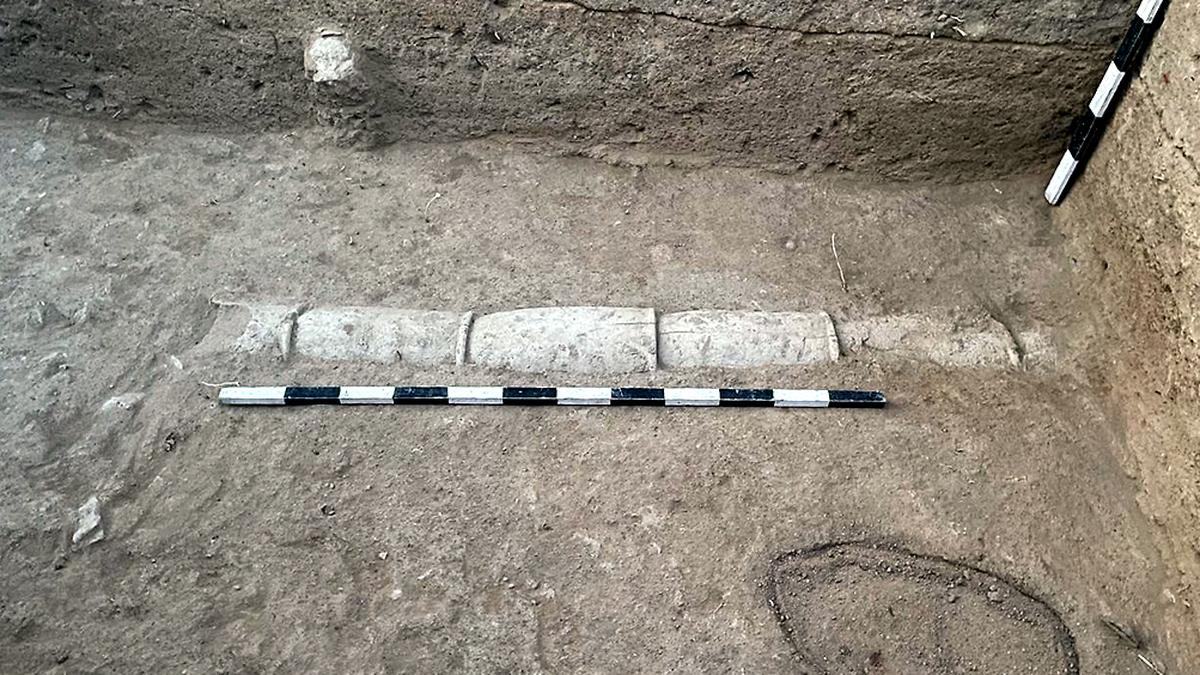
- 12 Jul 2025
In News:
The Tamil Nadu State Department of Archaeology (TNSDA) has sent 23 charcoal samples from seven archaeological excavation sites to the Beta Analytic Laboratory in the United States for Accelerator Mass Spectrometry (AMS) dating, aiming to establish an accurate chronology of the cultural deposits unearthed during the 2024–25 excavation season.
Key Discoveries:
- Keeladi: Over 500 antiquities, 100 inscribed potsherds, including red-slipped ware with fish motifs.
- Porpanaikkottai: From 11 trenches, 1,792 antiquities such as pottery, glass beads, and bangles were found.
- Tirumalapuram: A stone slab chamber with urn burials—a first in Tamil Nadu’s megalithic excavation record.
What is AMS Dating?
- A high-precision radiocarbon dating technique that measures the Carbon-14 (C-14) content in archaeological samples.
- Unlike conventional radiometric methods, AMS counts individual atoms of C-14, not their radioactive decay.
How It Works:
- Sample Preparation: Organic samples like charcoal are chemically treated and converted to graphite.
- Ion Generation: A cesium beam bombards the graphite, generating negatively charged carbon ions.
- Acceleration: Ions are propelled by a tandem electrostatic accelerator to high kinetic energies.
- Stripping & Detection:
- Ions pass through a stripping chamber to become positively charged.
- Magnetic fields separate C-12, C-13, and C-14 isotopes based on mass.
- C-14 atoms are counted to calculate the sample’s age.
Advantages of AMS Dating:
|
Feature |
AMS Dating |
Conventional Radiocarbon Dating |
|
Sample Size |
As little as 20 mg |
Requires ≥10 grams |
|
Precision |
Higher – atom-level count |
Lower – based on decay measurement |
|
Time |
Results within hours to days |
1–2 days or more |
|
Destructiveness |
Less destructive, ideal for rare artifacts |
More sample consumed |
|
Sensitivity |
Detects trace C-14 levels in minute samples like seeds, blood, etc. |
Limited sensitivity |
Applications of AMS:
- Archaeology: Dating of charcoal, wood, bones, pottery layers.
- Climate Science: Carbon mapping in marine and sediment systems.
- Geology/Oceanography: Sediment and core dating.
- Biomedical Research: Drug microdosing, tracing labeled compounds.
Admiralty (Jurisdiction and Settlement of Maritime Claims) Act, 2017
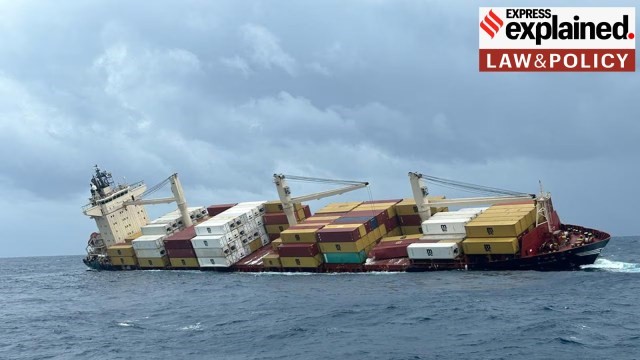
- 12 Jul 2025
In News:
In a rare legal move, the Kerala High Court ordered the conditional arrest of the Liberian container ship MSC Akiteta II, anchored at Vizhinjam Port. The Kerala government filed an admiralty suit seeking ?9,531 crore compensation for alleged environmental and economic damage caused by the sinking of MSC Elsa III.
Legal Framework: Admiralty (Jurisdiction and Settlement of Maritime Claims) Act, 2017
Purpose:
- Consolidates and updates maritime laws in India.
- Replaces outdated colonial legislations like:
- Admiralty Court Act, 1861
- Colonial Courts of Admiralty Acts of 1890 and 1891
- Relevant provisions of Letters Patent, 1865
Applicability:
- Applies to all vessels, regardless of owner’s residence or domicile.
- Exemptions:
- Inland vessels under the Inland Vessels Act, 1917
- Warships and other government vessels used for non-commercial purposes
- Foreign government vessels used for non-commercial purposes (as notified)
Key Provisions:
Section 4 – Maritime Claims:
High Courts can adjudicate disputes related to:
- Damage to vessels or marine environment
- Oil pollution and hazardous cargo
- Ownership or possession of a vessel
- Loss of life or injury due to vessel operations
- Carriage agreements (goods/passengers)
- Claims for unpaid wages, port dues, or cargo losses
Section 5 – Arrest of Vessels:
- Courts may order “arrest” of a ship to secure a maritime claim.
- Arrest can be made even if the ship is not directly involved but is owned by the liable party.
- It serves to ensure that compensation or security is provided before the vessel is released.
- Claimants may be asked to furnish an unconditional undertaking to compensate for wrongful arrest, if proved later.
Jurisdictional Expansion:
- Earlier limited to Bombay, Calcutta, and Madras High Courts.
- Now extended to Kerala, Karnataka, Odisha, Telangana, and Andhra Pradesh as well.
- Jurisdiction covers territorial waters up to 12 nautical miles, including seabed, subsoil, and airspace.
In Rem vs In Personam:
- Legal action can be initiated directly against the vessel (in rem) or against the owner/operator (in personam), based on the nature of the claim.
National Maritime Domain Awareness (NMDA) Project
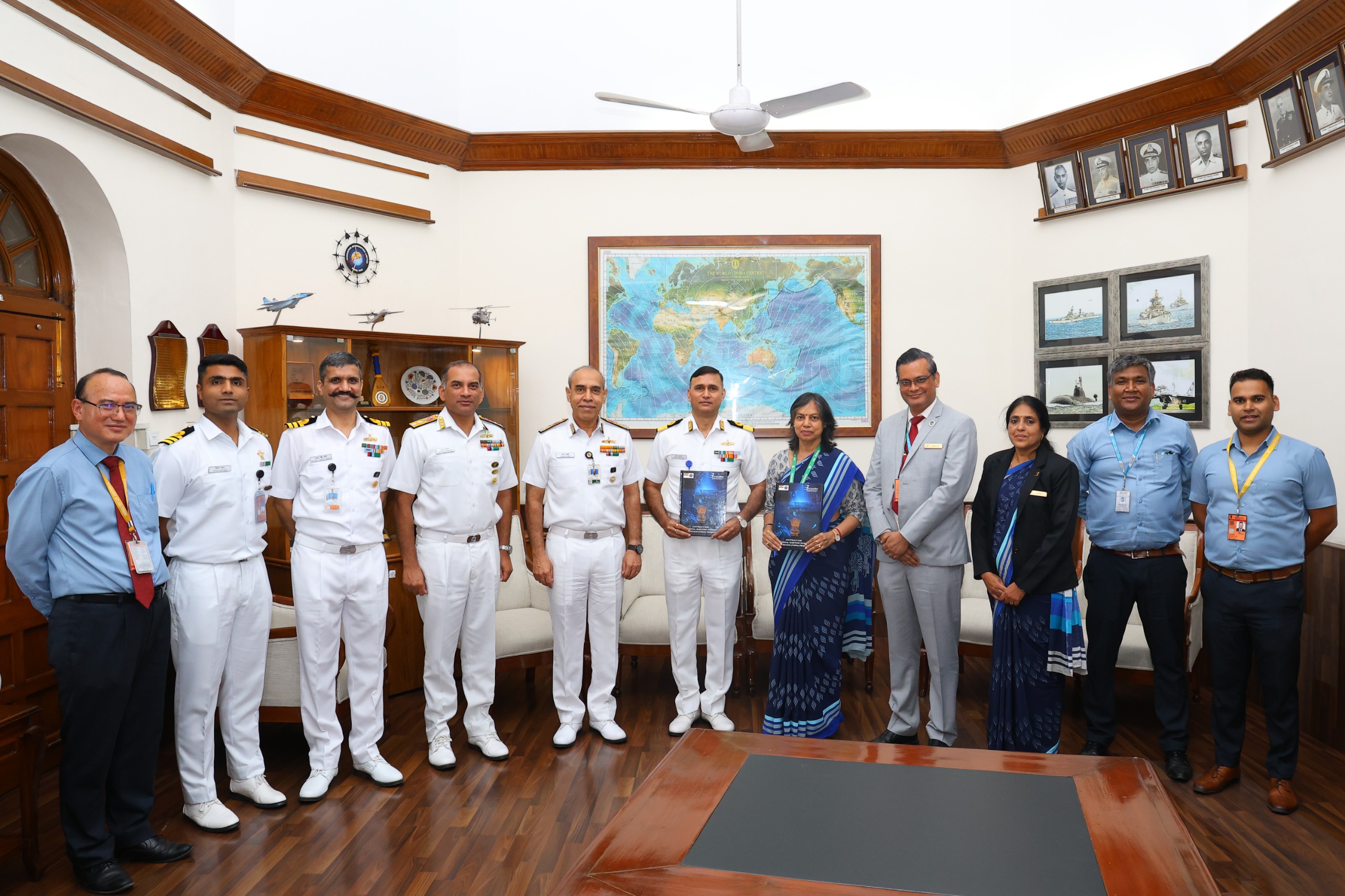
- 11 Jul 2025
In News:
The Indian Navy has signed a significant contract with Bharat Electronics Limited (BEL), Bengaluru for the implementation of the National Maritime Domain Awareness (NMDA) Project, a strategic initiative to strengthen India’s maritime and coastal security infrastructure.
Key Objectives and Scope
- Purpose: The NMDA Project aims to create a unified, real-time maritime surveillance and information-sharing framework to safeguard India's vast coastline and maritime interests.
- It seeks to enhance coordination among maritime stakeholders, including national agencies, coastal states, and union territories.
Major Components of the Project
- Upgrade of NC3I Network: The existing National Command, Control, Communication and Intelligence (NC3I) Network will be upgraded to a more advanced NMDA Network.
- AI Integration: Artificial Intelligence-enabled software will be deployed to enable smart surveillance, automated threat detection, and informed decision-making.
Multi-Agency NMDA Centre
- The Information Management and Analysis Centre (IMAC) at Gurugram — currently the nodal agency of the NC3I Network — will be transformed into a Multi-Agency NMDA Centre.
- The upgraded centre will include representatives from 15 national agencies across seven key ministries, such as Defence, Shipping, Petroleum, and Fisheries, ensuring seamless inter-agency coordination.
Operational and Strategic Benefits
- Integrated Maritime Picture: The system will link various stakeholders to provide a comprehensive operational view of India’s maritime domain.
- Enhanced Response: It will improve response mechanisms to maritime threats, search and rescue operations, environmental incidents, and other contingencies.
- Data Integration: Inputs from sectors such as commercial shipping and fisheries will be integrated into the system for improved situational awareness.
Execution and Administration
- The project will be implemented on a turnkey basis and administered by the Indian Navy.
- BEL will act as the lead system integrator, delivering both hardware and AI-enabled software solutions for the project.
Miniature Plasma Loops
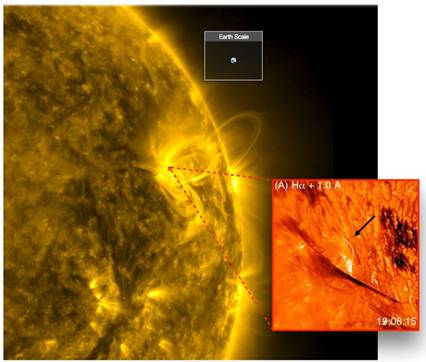
- 11 Jul 2025
In News:
A significant discovery by Indian and international astronomers has unveiled the existence of miniature plasma loops in the lower layers of the Sun’s atmosphere, shedding new light on how the Sun stores and releases magnetic energy—a long-standing mystery in solar physics.
- These loops are tiny in scale, measuring 3,000–4,000 km in length and less than 100 km in width, making them difficult to detect with earlier instruments. Despite their short lifespan of only a few minutes, they offer crucial insights into magnetic reconnection—a process where tangled magnetic field lines snap and realign, releasing immense energy.
- The research was led by scientists at the Indian Institute of Astrophysics (IIA), Bengaluru, under the Department of Science and Technology (DST), in collaboration with global institutions including NASA, the Max Planck Institute, and the Big Bear Solar Observatory (BBSO).
Key Findings and Instruments Used
- The team used high-resolution imaging and multi-wavelength spectroscopy, combining data from the Goode Solar Telescope (BBSO), NASA’s IRIS, and the Solar Dynamics Observatory (SDO).
- The loops were observed in the H-alpha spectral line from hydrogen atoms—crucial for studying the solar chromosphere.
- Spectroscopic data from IRIS revealed non-thermal broadening of spectral lines, indicating explosive magnetic activity.
- Plasma jets erupting from the tops of these loops point to reconnection-driven events, similar to those that cause large-scale solar eruptions.
- Using Differential Emission Measure (DEM) analysis, the plasma inside these tiny loops was found to reach temperatures of several million degrees, which is unexpectedly high for regions in the dense chromosphere.
Why It Matters
- Although coronal loops in the outer solar atmosphere have been studied for decades, these miniature loops offer a unique window into the fine-scale dynamics of the Sun's magnetic environment. Understanding them is crucial for grasping the mechanisms behind solar flares, coronal heating, and space weather phenomena that impact Earth.
Future Prospects
- The findings highlight the need for next-generation solar observatories. India’s upcoming National Large Solar Telescope (NLST)—a 2-meter aperture facility proposed near Pangong Lake, Ladakh—aims to provide sharper images of the Sun’s chromosphere and better magnetic field data.
Great Hornbill Sighting
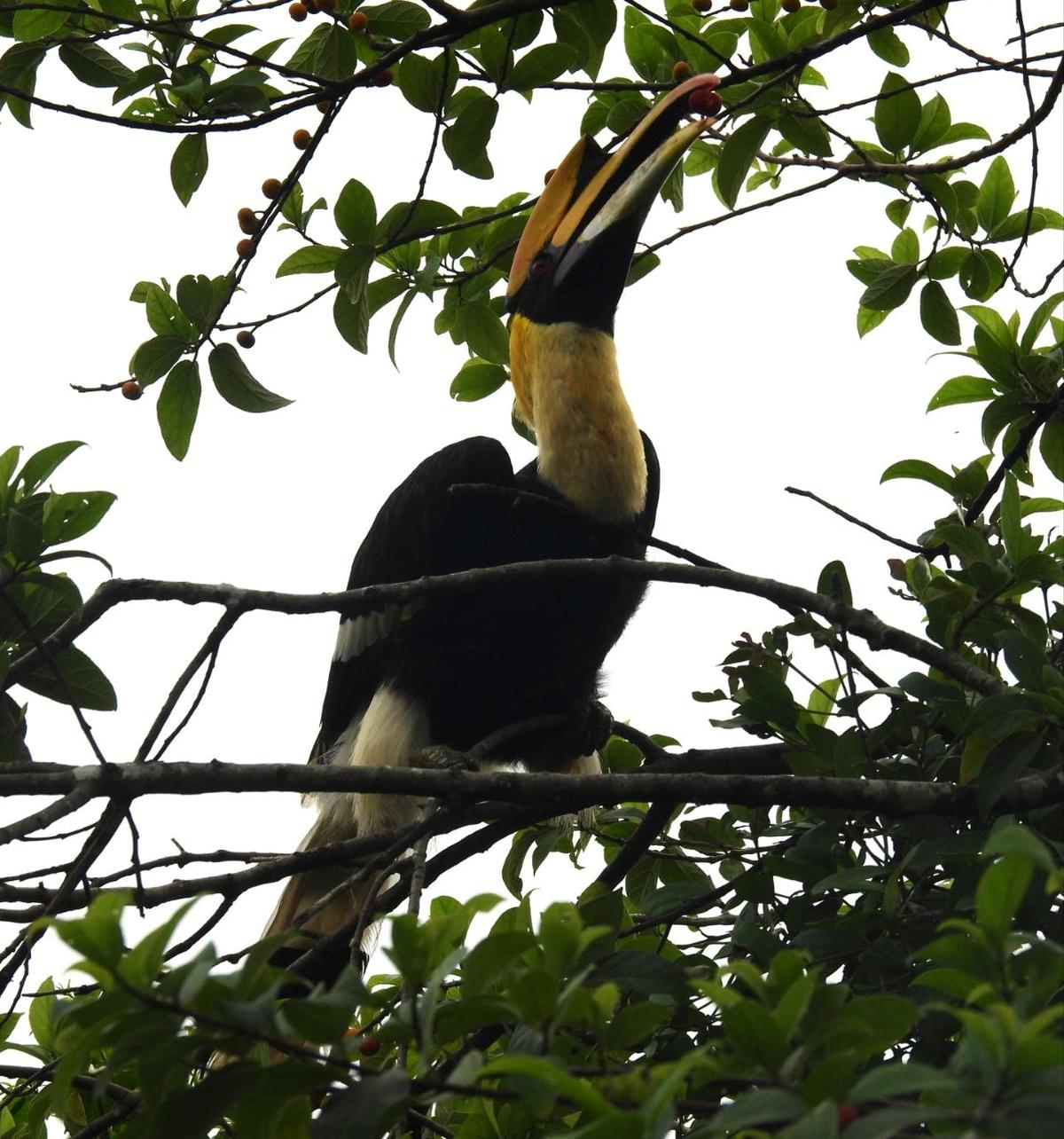
- 11 Jul 2025
In News:
In a rare and ecologically significant event, the Great Hornbill (Buceros bicornis), Kerala’s State Bird, was recently spotted in the coastal belt of Kakkampara, near Ezhimala in Kannur district. This area lies well outside the species’ typical forested habitats, making the sighting both unusual and important for biodiversity assessments.
About the Great Hornbill
- The Great Hornbill, also known as the great Indian hornbill or great pied hornbill, is one of the largest members of the hornbill family.
- It is primarily found in the Western Ghats, forests along the Himalayas, and parts of Southeast Asia.
- Its preferred habitat includes wet evergreen and moist deciduous forests at elevations between 600 to 2000 meters.
- This large, vividly colored bird measures between 95 to 120 cm in length with a wingspan of 151 to 178 cm, and typically weighs around 3 kilograms.
- The hornbill is easily identifiable by its prominent casque, a hollow structure on top of its large yellow bill. Males and females look similar, although males can be distinguished by their red irises and slightly larger casques, whereas females have white irises.
- Hornbills are primarily frugivorous, feeding on a variety of forest fruits, especially figs. However, they are opportunistic and may also consume small reptiles, birds, and mammals.
- A distinctive feature of the Great Hornbill is the tinted oil secreted by its preen gland, which gives its feathers, bill, and casque a yellow to reddish hue during grooming.
Conservation Status and Legal Protection
- The Great Hornbill is listed as ‘Vulnerable’ on the IUCN Red List due to habitat loss, hunting, and fragmented populations.
- In India, it is provided the highest level of protection under Schedule I of the Wildlife (Protection) Act, 1972, making it illegal to hunt or trade the species.
Ecological Importance of the Ezhimala Sighting
The occurrence of the Great Hornbill in a coastal region far from its usual forest range is considered a valuable ecological indicator. Experts believe such sightings could hint at changing habitat patterns, microhabitat availability, or even displacement due to habitat disturbance in core forest areas. The area around Ezhimala, despite human habitation, appears to sustain enough ecological richness to attract such a rare forest species.
India’s Battery Passport System
- 11 Jul 2025
In News:
The Government of India is preparing to implement a Battery Passport framework to enhance safety, traceability, and export readiness of electric vehicle (EV) batteries. The initiative is being spearheaded by NITI Aayog in collaboration with multiple ministries and stakeholders.
What is a Battery Passport?
A Battery Passport is a digital identity assigned to each EV battery, embedded in a QR code, which stores complete lifecycle information. This includes:
- Origin and manufacturing details
- Chemical composition and configuration
- Performance metrics and carbon footprint
- Date of manufacture and service history
- End-of-life data for recycling and reuse
The system assigns each battery a unique ID, akin to an Aadhaar for batteries, ensuring transparency and traceability across its lifecycle.
Key Features:
|
Feature |
Description |
|
QR Code Integration |
Allows users and service providers to scan and access battery details |
|
Lifecycle Tracking |
Monitors battery data from production to disposal |
|
Unique Digital Identity |
Each battery is individually identifiable, preventing cell mismatch |
|
Real-Time Monitoring |
Tracks performance, degradation, and usage patterns |
|
Standardised Data Format |
Includes manufacturer info, batch ID, composition, carbon metrics |
|
Controlled Data Access |
Enables secure sharing with regulators, manufacturers, and recyclers |
|
EU Compliance Ready |
Aligns with European Union regulations for batteries above 2 kWh |
Why is it Needed?
- Battery Safety: Addresses concerns due to frequent EV fire incidents linked to faulty or mismatched battery cells.
- Battery Swapping: Ensures interoperability and standardisation, essential for the upcoming battery-swapping policy.
- Export Promotion: Positions Indian batteries to comply with global traceability norms, especially in EU markets.
- Lifecycle & Performance Transparency: Batteries make up ~40% of EV cost; users benefit from informed decision-making.
- Circular Economy: Facilitates reuse, recycling, and end-of-life recovery to promote sustainability.
Expected Benefits
- Improved EV safety and reliability
- Enhanced consumer confidence
- Boost to India’s EV exports
- Support for circular economy in battery usage
- Industry-wide quality and compliance enforcement
Vera C. Rubin Observatory
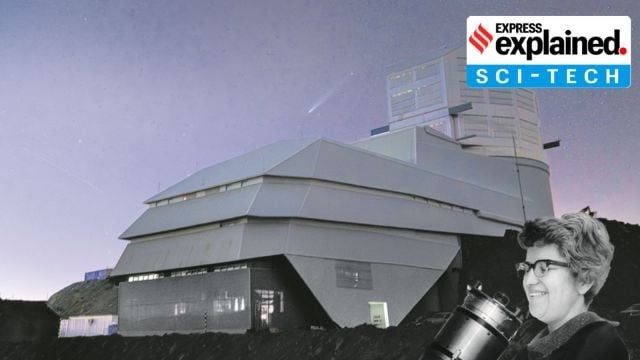
- 11 Jul 2025
In News:
The Vera C. Rubin Observatory in Chile has unveiled its first stunning images, highlighting the capabilities of its 3,200-megapixel digital camera — the most powerful ever constructed.
Location and Background:
- Situated 8,684 feet above sea level on Cerro Pachón mountain, Chilean Andes.
- Named after Vera C. Rubin, the astronomer who first provided evidence for dark matter in the 1970s.
- Joint initiative of the U.S. Department of Energy (DOE) and the National Science Foundation (NSF).
Objective:
The observatory aims to conduct an unprecedented 10-year survey of the southern sky, addressing critical questions like:
- Structure and formation of the Milky Way
- Existence of Planet 9
- Detection of potentially hazardous asteroids
- Nature of dark matter and dark energy
Key Features:
1. Simonyi Survey Telescope
A state-of-the-art telescope, unique for:
a) Wide Field of View:
- Captures an area equivalent to 40 full Moons in a single shot.
- Utilizes a three-mirror design:
- Primary Mirror: 8.4 m
- Secondary Mirror: 3.5 m
- Tertiary Mirror: 5 m (part of primary)
- Enables scanning of the entire visible sky every three nights.
b) Largest Digital Camera in the World:
- Size: Comparable to a small car
- Weight: 2,800 kg
- Resolution: 3,200 megapixels
- Sensor sensitivity: Detects objects 100 million times dimmer than visible to the naked eye
- Has six optical filters to capture various wavelengths (e.g., UV for hot stars, IR for distant galaxies)
c) Fastest Slewing Capability:
- Adjusts from one celestial target to another in just five seconds
- Enables up to 1,000 images per night
Scientific Potential and Impact
- Will collect 20 terabytes of data every night, generating nearly 10 million alerts per night for any detected changes in the sky.
- Already identified 2,104 new asteroids, including 7 near-Earth objects, using only 10 hours of preliminary data.
- Expected to catalogue:
- 5 million+ asteroids
- 100,000 near-Earth objects
- More than double the total known asteroids within a year of full operation
- Facilitates a high-resolution map of the universe’s structure—vital to understand the distribution of dark matter and dark energy, which together constitute 95% of the universe.
Sheesh Mahal
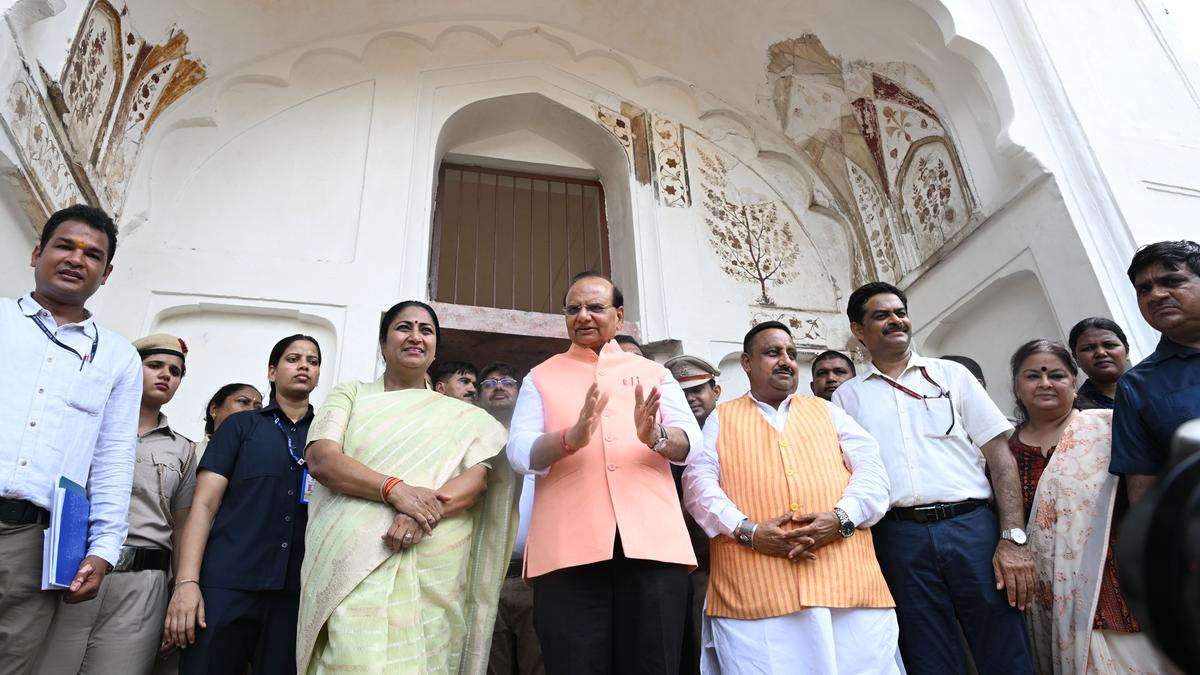
- 10 Jul 2025
In News:
The Sheesh Mahal, a 17th-century Mughal-era palace located in Shalimar Bagh, North Delhi, was recently restored and reopened to the public by the Union Culture and Tourism Minister. The restoration was carried out by the Archaeological Survey of India (ASI) and the Delhi Development Authority (DDA).
About Sheesh Mahal
- Built in 1653 by Izz-un-Nisha Begum, wife of Mughal Emperor Shah Jahan.
- Inspired by and a replica of Shalimar Bagh in Kashmir, designed as a royal retreat from Shahjahanabad.
- The garden was originally called Aizzabad Garden, later renamed Shalimar, meaning “abode of pleasure”.
- The palace was the site of Aurangzeb’s first coronation in 1658.
- Declared a monument of national importance in 1983, under ASI protection.
Architectural Features
- Constructed using red sandstone and brick masonry.
- Features archways, three-arched dalans, and a central hall with compartments on each wing.
- A Baradari (pavilion) lies in the main building with a water channel passing through it.
- Houses mirror-worked chambers with paintings in Kangra and Rajasthani qalam, depicting poetic imagery by Keshav, Surdas, and Bihari.
- Adjacent structure served as a Hamam (bathhouse).
Restoration Highlights
- ASI restored the palace’s original heritage features.
- DDA recreated the traditional Mughal Char Bagh-style landscape.
- Traditional materials used: Lime surkhi, lakhori bricks, gud (jaggery), belgiri, and urad dal.
- An old baradari and three heritage cottages were also restored.
New Additions for Public Engagement
- Two heritage cottages repurposed:
- The Readers Café Corner – a literary café.
- Café Shalimar – for general visitors.
2nd Edition of the NER District SDG Index
- 10 Jul 2025
In News:
NITI Aayog, in collaboration with the Ministry of Development of North Eastern Region (MoDoNER) and with technical support from UNDP, released the second edition of the North Eastern Region District SDG Index (2023–24).
About the NER District SDG Index
- First Edition: Released in August 2021
- Current Edition: Covers 121 districts across the 8 North Eastern States
- Developed By: NITI Aayog, MoDoNER, and UNDP
- Purpose:
- Monitor district-wise progress on Sustainable Development Goals (SDGs)
- Provide evidence-based planning, resource allocation, and intervention strategies
- Ensure localisation of SDGs and leave no one behind
Scoring Categories
Districts are classified into four categories:
- Achiever: Score = 100
- Front Runner: Score 65–99
- Performer: Score 50–64
- Aspirant: Score < 50
Composite Score Range:
- Highest: Hnahthial, Mizoram – 81.43
- Lowest: Longding, Arunachal Pradesh – 58.71
Key Highlights
- 85% of districts showed an increase in composite scores.
- All districts of Mizoram, Sikkim, and Tripura attained Front Runner status.
- Hnahthial (Mizoram) emerged as the best-performing district.
- Nagaland entered the Top 10 with 3 districts.
- Sikkim showed the most consistent intra-state performance with a score range of just 5.5 points.
- Assam saw notable improvements in Zero Hunger, Quality Education, Clean Water & Sanitation, and Decent Work & Economic Growth.
Top Performing Districts
Significance
- Supports the Viksit Bharat @2047 vision by targeting SDG achievement by 2030.
- Enhances cooperative federalism by aligning state and district efforts with national goals.
- Acts as a diagnostic and planning tool for identifying gaps and prioritising interventions.
UAE Golden Visa Scheme
- 10 Jul 2025
In News:
The United Arab Emirates (UAE) has introduced a nomination-based pilot Golden Visa programme targeting skilled individuals from India and Bangladesh. However, recent rumours around a ?23 lakh “lifetime visa” triggered misinformation, later debunked by UAE authorities.
What is a Golden Visa?
- A long-term residency visa allowing foreign nationals to live, work, or study in the UAE without a local sponsor.
- Designed to attract investors, entrepreneurs, scientists, and skilled professionals.
- Offers 5 to 10 years of renewable residency, and in some cases, lifetime validity under specific frameworks.
Key Features of the UAE Golden Visa Scheme
|
Feature |
Details |
|
Residency |
Long-term (5–10 years); in some cases lifetime under nomination |
|
Sponsorship |
Not required (self-sponsored) |
|
Eligibility Categories |
Investors, entrepreneurs, scientists, doctors, artists, athletes, PhD holders, exceptional students |
|
Benefits |
Sponsor family and domestic staff; multiple entry; no need to stay in UAE continuously |
|
New Nomination-Based Model |
Pilot phase launched for India and Bangladesh — selection based on professional merit and contributions |
|
Application Process |
Managed through UAE’s official channels; some remote application facilities (e.g., OneVASCO centres) available |
|
No Minimum Investment Requirement (in new model) |
Unlike earlier versions requiring AED 2 million+ in assets or business |
Controversy: ?23 Lakh ‘Lifetime Golden Visa’ Rumour
- A viral rumour claimed that Indians could buy a lifetime UAE Golden Visa for ?23.3 lakh (AED 1,00,000).
- Debunked by UAE Government within 48 hours as false and misleading.
- Originated from a press release by Rayad Group, later withdrawn and discredited.
- UAE authorities clarified: No consultancy is authorised to process Golden Visas outside official channels.
- Golden Visas are not available for simple purchase; eligibility is merit-based, not transactional.
Eligibility vs. Misconception
- Golden Visas are for High Net-Worth Individuals (HNWIs) and exceptional talent — not for general migration or middle-class aspirations.
- Traditional routes still require investments of AED 2 million (~?4.67 crore) or equivalent in real estate or business.
Comparison with Other Countries’ Golden Visa Models
|
Country |
Investment Requirement |
|
Portugal |
€500,000 real estate / job creation / capital transfer |
|
Greece |
€250,000 property (rising in urban areas) |
|
Italy |
Startups, bonds, or public projects |
|
Singapore |
SGD 2.5 million under Global Investor Programme |
|
Grenada |
$235,000 donation or $270,000 property for citizenship |
|
UAE (Traditional) |
AED 2 million in real estate or business assets |
Significance for India-UAE Relations
- Enhances people-to-people links under the India–UAE Comprehensive Economic Partnership Agreement (CEPA).
- Offers Indian professionals access to UAE’s innovation, business, and academic ecosystem.
- Promotes economic diversification of UAE beyond oil — with India as a strategic partner.
Amaravati Quantum Valley Declaration (AQVD)
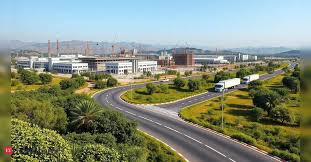
- 10 Jul 2025
In News:
The Government of Andhra Pradesh has officially approved the Amaravati Quantum Valley Declaration (AQVD), aiming to transform Amaravati into India’s first Quantum Valley and a global hub for quantum technologies.
What is AQVD?
- A strategic framework signed by the Andhra Pradesh Government, IBM, TCS, L&T, academia, and startups.
- It envisions a collaborative ecosystem for quantum computing, communication, sensing, and chip development.
- Seeks to align with India’s National Quantum Mission (NQM) to position Amaravati as a deep-tech capital.
Key Features and Targets
- Investment Goals: Total investment target of $1 billion by 2029, with $500 million by 2027.
- QChipIN: Creation of India’s largest open quantum testbed, integrating quantum computers and enabling hands-on innovation.
- Focus Areas: Quantum computing, quantum chip design, sensing technologies, and secure quantum communication.
- Skilling & Research: Encourages development of quantum talent and promotes industry-academia synergy.
Quantum Computing – Core Concepts
- Qubit: Basic unit of quantum data, unlike classical bits, can be in a state of superposition (0 and 1 simultaneously).
- Superposition: Enables parallel processing.
- Entanglement: Qubits can be interlinked, allowing instantaneous state sharing.
- Quantum Gates: Analogous to classical logic gates but work on qubits to perform complex operations.
Strategic & National Significance
- Dual-Use Technology: Quantum computing impacts national security, health, climate modeling, logistics, cryptography, and more.
- Data Sovereignty: Reduces dependence on foreign cloud-based quantum platforms.
- Global Competitiveness: Puts India on the map with nations like the US, China, and the EU in the quantum race.
Related National Initiatives
- National Quantum Mission (NQM):
- Launched with ?6,003 crore outlay.
- Target: Develop quantum computers with 50–1000 qubits by 2031.
- QpiAI-Indus (2025): India’s first full-stack quantum computer with 25 superconducting qubits.
- ISRO-SAC Projects: Satellite-based Quantum Key Distribution (QKD) for ultra-secure communications.
- Quantum Materials: Focus on superconductors and topological materials for robust devices.
Challenges Ahead
|
Challenge |
Description |
|
Decoherence |
Qubits are unstable and prone to error. |
|
Scalability |
Building large-scale, fault-tolerant systems is difficult. |
|
Cost |
Requires ultra-cold cryogenic systems and electromagnetic shielding. |
Japonica Rice
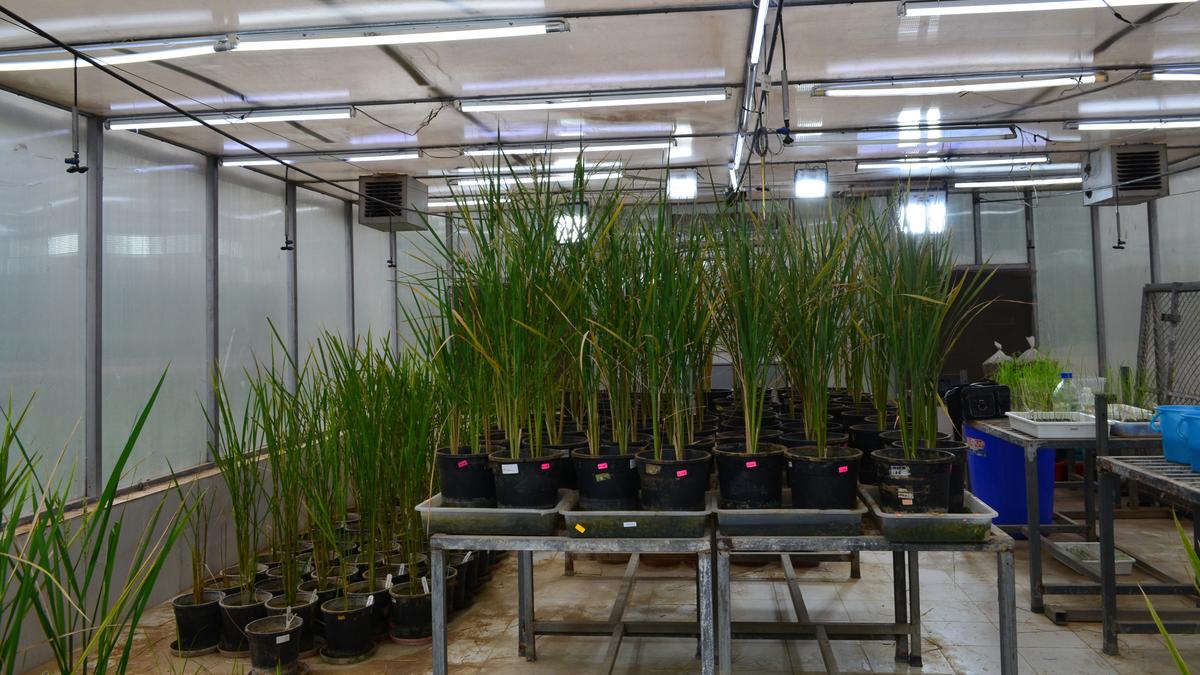
- 10 Jul 2025
In News:
The National Institute of Plant Genome Research (NIPGR), New Delhi, has successfully used CRISPR-Cas9 gene-editing technology to develop japonica rice lines with enhanced phosphate uptake, leading to up to 40% higher yield under limited fertilizer conditions. The research is published in the Plant Biotechnology Journal.
Background: Phosphorus and Agriculture
- Phosphorus (P) is vital for plant growth, involved in photosynthesis, energy transfer, and root development.
- However, only 15–20% of phosphate fertilizers are absorbed by crops; the rest is lost due to leaching or chemical fixation in soils.
- India imports ~4.5 million tonnes of DAP (Diammonium Phosphate) annually, making it crucial to improve P-use efficiency.
The Innovation: CRISPR-Based Precision Editing
- Target Gene: OsPHO1;2, a phosphate transporter responsible for P movement from root to shoot.
- Repressor Gene Identified: OsWRKY6, a negative regulator of OsPHO1;2.
- Initial approach (complete knockout of repressor) caused negative effects due to loss of other essential functions.
- Final strategy: Only the 30 base-pair binding site of OsWRKY6 on the promoter was deleted using CRISPR-Cas9, ensuring:
- Increased transporter expression
- Normal functioning of other plant processes
- Enhanced phosphate transfer and absorption
Key Outcomes:
- Yield Increase:
- 20% with full phosphate dose
- 40% with only 10% of recommended fertilizer
- Improved panicle number and seed count
- No compromise on seed size, starch content, or quality
- Roots acted as efficient phosphate sinks, absorbing more P from soil
- Gene-editing localized to promoter site, ensuring minimal genetic disturbance
Safety and Regulatory Assurance
- No off-target effects: Verified using leading in silico tools and genome analysis
- No foreign DNA in final seeds: Foreign genes (e.g., Cas9, Agrobacterium vector) eliminated via Mendelian segregation
- Plants with precise edits were screened and only accurate lines were cultivated further
Significance for India
- Phosphorus-deficient soils are common across India, especially in alkaline or acidic regions
- Potential application to indica rice varieties, widely grown in India
- Supports sustainable agriculture by reducing fertilizer usage and environmental runoff
- Strengthens food security and reduces import dependency on fertilizers
About Japonica Rice:
- One of the two main varieties of Oryza sativa (the other is Indica)
- Short, sticky grains; grown primarily in Japan, Korea, China, and other East Asian countries
- Model variety used: Nipponbare, due to ease of genetic manipulation
- Japonica is commonly used in research; adaptation to Indian indica cultivars is under process
National Overseas Scholarship Scheme
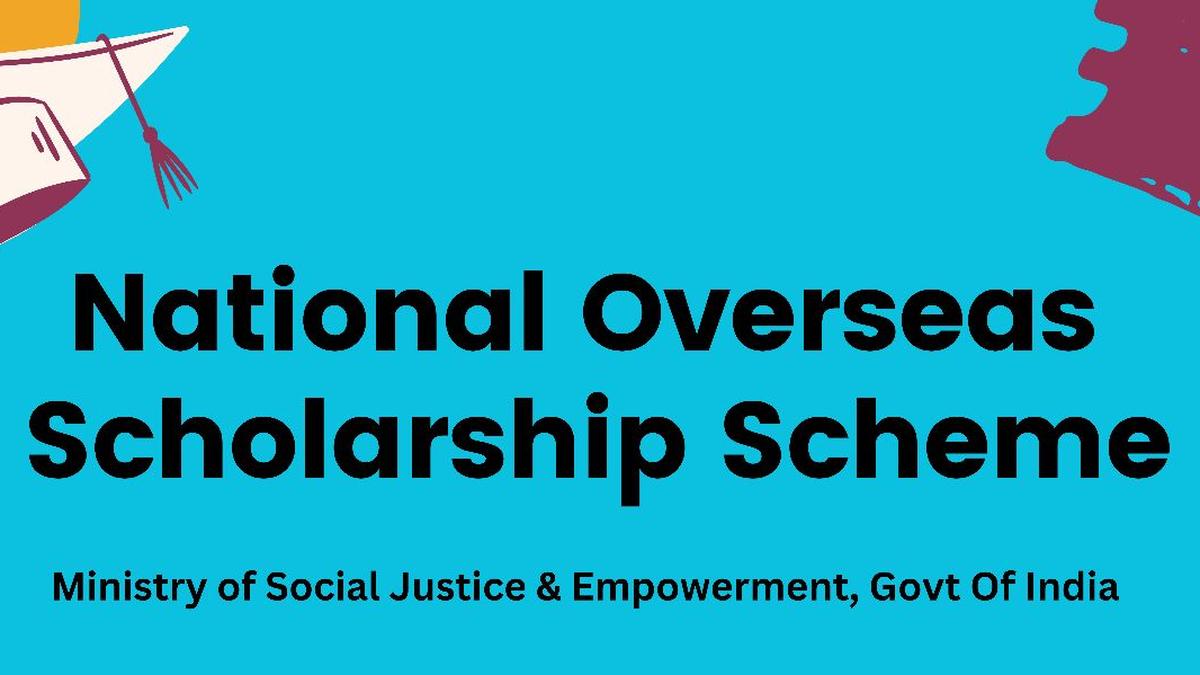
- 09 Jul 2025
In News:
The Ministry of Social Justice and Empowerment has come under scrutiny after withholding provisional award letters for 66 out of 106 selected candidates under the National Overseas Scholarship (NOS) scheme for the 2025–26 cycle. This development has raised concerns regarding funding gaps, administrative bottlenecks, and the future of the scheme intended to uplift marginalised students through access to global education.
About the National Overseas Scholarship Scheme
- The NOS is a Central Sector Scheme aimed at enabling students from socially and economically disadvantaged communities to pursue postgraduate (Master’s) and doctoral (Ph.D.) education abroad in top-ranking universities.
- It provides financial assistance for tuition, living expenses, contingency costs, and travel.
- Administered by: Ministry of Social Justice and Empowerment
- Target Beneficiaries:
- Scheduled Castes (SCs)
- Denotified, Nomadic, and Semi-Nomadic Tribes
- Landless Agricultural Labourers
- Traditional Artisans
- Eligibility Criteria:
- Academic Qualification:
- Master’s: Bachelor’s degree with ≥ 60%
- Ph.D.: Master’s degree with ≥ 60%
- Age Limit: Not more than 35 years as on April 1 of the selection year.
- Income Limit: Annual family income should not exceed ?8 lakh.
- University Criteria: Unconditional admission in Top 500 QS-ranked institutions.
- Other Conditions:
- A maximum of 2 students per family (second eligible only if slots remain).
- Not already settled or studying abroad.
- Key Features:
- Total Annual Slots: 125
- 115 for SCs, 6 for Denotified Tribes, 4 for Labourers/Artisans
- 30% reserved for women candidates
- Two-Phase Selection:
- First: QS Top 500 mandatory
- Second: Open to broader university lists
- State Cap: Maximum 10% slots per state to ensure geographic diversity
Ongoing Evaluation and Policy Review
- The government is currently conducting a performance evaluation of the NOS scheme ahead of its 16th financial cycle (2026–27). This includes assessing issues related to fund disbursal, slot utilization, and implementation gaps.
- A Parliamentary Standing Committee on Social Justice and Empowerment had earlier flagged:
- Insufficient scholarship amounts
- Persistent delays in fund release
- Underutilization of slots
- Need for expanding coverage and increasing annual slots
17th BRICS Summit 2025
- 09 Jul 2025
In News:
The 17th BRICS Summit was held in Rio de Janeiro, Brazil under the theme:
“Strengthening Global South Cooperation for a More Inclusive and Sustainable Governance.”
The summit concluded with the adoption of the Rio de Janeiro Declaration, marking a strategic shift towards BRICS expansion, inclusive multilateralism, and South-South cooperation.
What is BRICS?
- BRICS is an intergovernmental platform of emerging economies originally comprising Brazil, Russia, India, China, and South Africa.
- The term BRIC was coined by economist Jim O’Neill in 2001.
- The grouping evolved from informal dialogue (1st Summit in 2009, Yekaterinburg) to a structured cooperation framework.
- In 2024–25, BRICS underwent expansion and is now referred to as BRICS+.
Key Highlights of the 17th BRICS Summit 2025
1. Expansion of Membership
- Indonesia formally joined BRICS in 2025, becoming its first Southeast Asian member.
- Eleven new BRICS+ partner countries were welcomed: Belarus, Bolivia, Kazakhstan, Cuba, Nigeria, Malaysia, Thailand, Vietnam, Uganda, Uzbekistan.
- The expansion aims to reshape global power dynamics, promote multipolarity, and deepen Asia-Africa-Latin America cooperation.
2. Rio de Janeiro Declaration: Major Themes
A. Global Governance Reform
- Strong call for reforming UNSC, IMF, WTO to reflect contemporary geopolitical and economic realities.
- Supported the UN Summit of the Future's “Pact for the Future”, including the Global Digital Compact and Declaration on Future Generations.
- Emphasized greater participation of the Global South in international decision-making.
B. Peace and Security
- Condemned terrorism in all forms; specifically denounced the Pahalgam attack in India.
- Called for zero tolerance for terrorism and decisive global action against sponsors of terror.
- Opposed securitizing climate change; advocated development-centric responses to global challenges.
C. Technology and Responsible AI
- Released a Statement on Global AI Governance promoting a balance between innovation and regulation.
- Proposed the creation of a BRICS Science & Research Repository to facilitate open access for Global South researchers.
D. Climate Action
- Reaffirmed commitment to the Paris Agreement and UNFCCC principles, especially Common But Differentiated Responsibilities (CBDR).
- Supported Brazil’s hosting of COP-30 (Belem) and endorsed India’s bid for COP-33 in 2028.
- Launched the BRICS Leaders’ Framework on Climate Finance to enhance climate adaptation and finance equity.
E. Economic and Financial Cooperation
- Reviewed the BRICS Economic Partnership Strategy 2025; agreed to frame the 2030 Strategy, focusing on:
- Digital economy
- Trade and investment
- Financial integration
- Sustainable development
- Emphasized inclusive, rules-based multilateral trade systems.
- Launched BRICS Multilateral Guarantee Mechanism (BMG) under New Development Bank (NDB) to catalyze infrastructure and climate finance.
F. Social and Cultural Priorities
- Focus on inclusive development through:
- Empowerment of youth and women
- Support for persons with disabilities
- Urbanization and migration management
- Recognized demographic transitions as opportunities for sustainable growth.
India at BRICS 2025
India played a pivotal role in shaping key summit outcomes and announced its BRICS Chairship for 2026, themed around: Building, Resilience, Innovation, Cooperation, and Sustainability.
India’s Key Interventions:
- Global Financial Reform: Advocated for de-dollarization and diversification of global trade currencies.
- Digital Governance: Pushed for interoperable, inclusive digital public infrastructure.
- Institutional Reform: Reiterated the urgent need to restructure global governance institutions.
- Climate Finance: Urged equitable climate financing mechanisms for developing nations.
On BRICS Currency:
- India rejected the idea of a common BRICS currency, but supported local currency trade under a National Currency Settlement Framework.
- Refused to settle Russian oil trade in Chinese Yuan, indicating resistance to Chinese monetary dominance within BRICS.
Geopolitical Implications and U.S. Response
- With BRICS now representing 45% of the global population and 35% of world GDP, the bloc's rise has triggered concern in Western circles.
- The U.S., under former President Donald Trump, warned of:
- 10% tariff on countries aligning with BRICS’ "anti-American" stances.
- 100% tariff if BRICS pursues de-dollarization, viewing it as a direct challenge to U.S. economic interests.
Discovery of Penico
- 09 Jul 2025
In News:
Archaeologists have recently uncovered a significant archaeological site in northern Peru—an ancient city named Penico, estimated to be around 3,500 years old. The discovery sheds new light on early urban development, trade networks, and cultural evolution in pre-Inca South America.
Location and Time Period
- Geographic Location: Penico is located in the Barranca Province of northern Peru, approximately 200 km north of Lima, the capital.
- Altitude: The site is situated on a hillside terrace, around 600 metres above sea level.
- Estimated Age: The city is believed to have been founded between 1800 BCE and 1500 BCE, roughly during the same period as early civilizations in Egypt, Sumeria, and the Indus Valley.
Key Features of the Site
Urban and Architectural Highlights:
- The city is laid out around a central circular plaza, encircled by at least 18 identified stone-and-mud structures.
- Structures include:
- Ceremonial temples
- Residential complexes
- Public gathering areas with sculpted wall reliefs
Notable Artifacts:
- Clay figurines depicting human and animal forms
- Pututus (conch shell trumpets), traditionally used for long-distance communication
- Beaded necklaces and ceremonial artifacts crafted from shells and stones
Cultural and Historical Significance
Strategic Importance:
- Penico’s elevated location likely served both practical and symbolic purposes—protecting against natural disasters such as floods or landslides, while also enhancing the visibility and monumentality of its structures.
- The city’s placement made it a vital trading nexus, linking communities across the Pacific coast, Andean highlands, and the Amazon basin.
Link to the Caral Civilization:
- Penico is situated near the ancient city of Caral, considered the oldest known civilization in the Americas (dating back to 3000 BCE in the Supe Valley).
- Researchers suggest that Penico represents a cultural continuation or evolution of the Caral society, which declined due to climatic disruptions.
- The discovery of Penico offers valuable insight into how civilizations adapted and transitioned post-Caral, particularly in terms of urban planning, trade, and ceremonial practices.
Comparative Civilizational Context:
- Despite emerging in geographic isolation, Penico developed contemporaneously with Bronze Age civilizations of Mesopotamia, the Nile Valley, and South Asia, showcasing parallel patterns in complex societal development.
International Treaty on Plant Genetic Resources for Food and Agriculture (ITPGRFA)
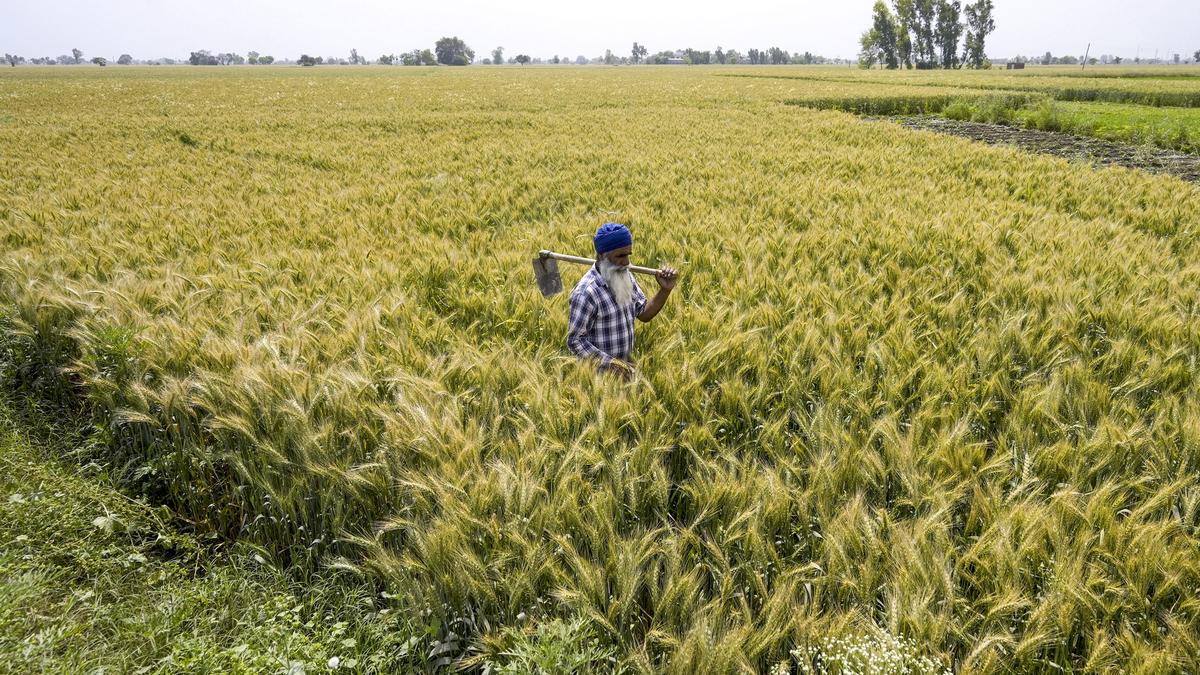
- 09 Jul 2025
In News:
India has raised strong objections to proposed amendments to the International Treaty on Plant Genetic Resources for Food and Agriculture (ITPGRFA)—also known as the Plant Treaty—during recent deliberations in Peru. The concerns stem from potential implications for India’s sovereign rights over plant genetic resources and its traditional farming practices.
About the Plant Treaty
The Plant Treaty is a legally binding international agreement, adopted by the Food and Agriculture Organization (FAO) in 2001 and enforced from 2004. India is a signatory to the treaty. It is aligned with the Convention on Biological Diversity (CBD) and supports the FAO’s Global Plan of Action.
Key Objectives:
- Conservation and sustainable use of plant genetic resources for food and agriculture (PGRFA).
- Equitable sharing of benefits arising from the use of these resources.
- Ensuring food security and preserving agrobiodiversity, especially for climate-resilient agriculture.
Core Features of the Treaty
- Multilateral System (MLS) of Access and Benefit-Sharing:
- Covers 64 major crops (e.g., rice, wheat, maize, pulses) listed in Annex I.
- Facilitates global access to plant genetic materials among member nations.
- Ensures benefit-sharing through:
- Technology transfer
- Capacity-building
- Commercialization revenues
- Standard Material Transfer Agreement (SMTA):
- A legal framework that governs the access, transfer, and exchange of genetic materials under the MLS.
- Farmers' Rights (Article 9):
- Recognizes the rights of farmers to save, use, exchange, and sell farm-saved seeds.
- Acknowledges indigenous knowledge and the contributions of local communities.
- Encourages inclusion of farmers in decision-making processes.
- Global Information System (Article 17): Facilitates data-sharing on plant genetic resources globally.
- Benefit-sharing Fund (BSF): Supports farmers and public institutions in developing countries to conserve genetic diversity, enhance crop productivity, and build resilience to pests and climate change.
India’s Concerns Over the Proposed Amendments
The new proposal seeks to expand the scope of Annex I, making it mandatory for countries to share all plant germplasm through the MLS under a uniform SMTA framework.
Why India Opposes the Proposal:
- Erosion of Sovereignty: It may weaken India’s control over its vast indigenous plant genetic wealth.
- Legal Conflict: The proposal could override India’s national laws governing access and benefit-sharing.
- Impact on Traditional Practices: Smallholder and tribal farmers who rely on traditional seed-saving and exchange systems may be adversely affected.
- Threat to Biodiversity Conservation: Centralized control over plant genetic materials could hinder community-led conservation efforts.
Alluri Sitarama Raju
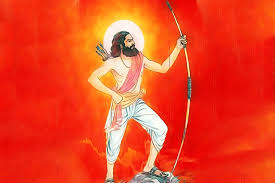
- 09 Jul 2025
In News:
During the 128th birth anniversary celebration of Alluri Sitarama Raju, the Union Defence Minister lauded his valiant role in India’s freedom movement. The Minister also reiterated the government’s commitment to ending Maoist extremism by August 2026.
Alluri Sitarama Raju
- He was a revolutionary figure revered for leading a tribal resistance against British colonial authority. Although he did not belong to a tribal community himself, he championed the cause of indigenous people, earning their deep respect and admiration.
- He was born on 4 July 1897 in Mogallu village, near Bhimavaram, located in present-day Andhra Pradesh. His revolutionary activities were concentrated in the Eastern Ghats’ Agency areas of the state.
Historical Context
- Early Life and Spiritual Turn: After receiving basic education in his village and later in Visakhapatnam, Alluri chose a life of renunciation around the age of 18. As a sanyasi, he traversed forested and hilly regions, developing a close bond with tribal communities.
- Gandhian Influence and Shift to Armed Struggle: Initially influenced by Mahatma Gandhi’s Non-Cooperation Movement, he urged tribal people to disengage from colonial institutions. However, disillusioned by the ineffectiveness of non-violence in protecting tribal rights, he resorted to armed rebellion.
- Role in the Freedom Struggle
- The Rampa Rebellion (1922–1924): Alluri became the face of the Rampa Rebellion, launched in protest against the Madras Forest Act, 1882, which curtailed traditional tribal practices like Podu cultivation and led to forced displacement. Additionally, tribals were subjected to unpaid labour for constructing colonial infrastructure, fueling widespread anger.
- Guerrilla Tactics and Resistance: Raju organized tribal youth into a guerrilla army that attacked British police outposts, looted weapons, and eliminated British officers, causing considerable concern for the colonial administration.
- Martyrdom: His growing influence and success made him a prime target for the British, who announced a ?10,000 bounty for his capture. He was eventually apprehended through deception and executed on 7 May 1924, reportedly tied to a tree and shot dead.
Legacy
- Revered as “Manyam Veerudu” or the Hero of the Jungle, Alluri’s life epitomizes courage and sacrifice.
- The Government of Andhra Pradesh commemorates July 4 as a state festival in his honour.
- He remains a powerful symbol of tribal resistance and justice in India's freedom narrative.
Nipah Virus
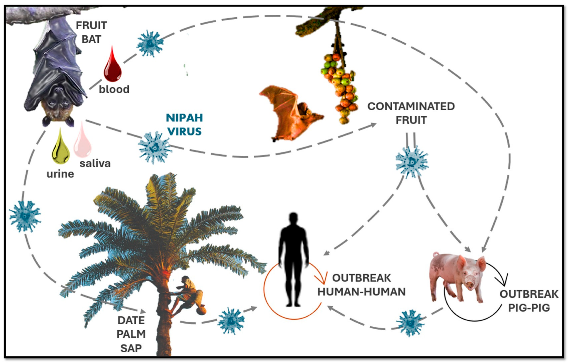
- 08 Jul 2025
In News:
The Kerala government has initiated a serological surveillance programme in response to the recurrent outbreaks of the Nipah virus (NiV) in the northern districts of the state. Notably, this marks the eighth outbreak in as many years within Kerala’s high-risk zones.
About Nipah Virus (NiV):
What is Nipah Virus?
- Zoonotic Nature: The Nipah virus is a highly infectious zoonotic pathogen, transmitted primarily from animals (especially bats) to humans.
- It can cause illnesses ranging from mild flu-like symptoms to fatal brain inflammation (encephalitis).
- Case Fatality Rate: Ranges between 40% and 75%, depending on healthcare accessibility and regional factors.
History of Outbreaks:
|
Country |
Outbreak Details |
|
Malaysia |
First outbreak recorded in 1999 among pig farmers. |
|
Bangladesh |
Repeated annual outbreaks since 2001. |
|
India |
Significant outbreaks in West Bengal (Siliguri) and Kerala (8 episodes since 2018). |
Reservoir and Transmission:
Natural Host:
- Fruit bats of the Pteropodidae family (genus Pteropus) are the natural reservoirs.
- The virus is shed through bat saliva, urine, and feces, often contaminating fruits or surfaces.
Modes of Transmission:
- Animal to Human:
- Direct contact with infected animals (especially pigs or bats).
- Consumption of contaminated items like raw date palm sap or fruit.
- Human to Human:
- Close contact with infected persons, especially bodily fluids.
- High risk in hospital settings among caregivers and healthcare workers.
Symptoms and Disease Progression:
- Initial Symptoms: Fever, headache, sore throat, muscle pain, and vomiting.
- Advanced Cases: Severe respiratory issues, seizures, encephalitis, and altered mental status.
- Incubation Period: Typically 4–14 days, may extend up to 45 days.
- Post-recovery Complications: Around 20% of survivors may suffer long-term neurological effects such as personality changes or seizures.
Diagnostic Tools:
- RT-PCR: Detects viral RNA in blood, urine, throat swabs, or cerebrospinal fluid.
- ELISA: Identifies presence of NiV-specific antibodies.
- Advanced Virology Labs: Use virus isolation and genome sequencing methods.
Kerala’s Serological Surveillance Initiative:
- The state has launched a targeted serological survey using pseudovirus neutralization assays.
- The survey focuses on human and domestic animal populations living near previously identified Nipah hotspots.
- Objectives:
- Track antibody prevalence in high-risk populations.
- Understand spillover mechanisms from animal to human.
- Identify potential animal reservoirs and transmission routes.
- Enhance early warning capabilities to prevent future outbreaks.
Pethia dibrugarhensis
- 08 Jul 2025
In News:
A team of Indian researchers has identified a new species of freshwater fish in the Brahmaputra River near Maijan, Dibrugarh (Assam). The species has been named Pethia dibrugarhensis, in reference to its place of discovery.
Discovery Details:
- The discovery was made during a freshwater biodiversity survey conducted by:
- ICAR–Central Inland Fisheries Research Institute (CIFRI) – Barrackpore & Guwahati centres
- Manipur University
- The findings were published in the international journal National Academy Science Letters (Springer Nature).
About the Species:
- Family: Cyprinidae (the carp family)
- Genus: Pethia
- Common Group: Barbs (small indigenous freshwater fish)
- Habitat: Found in moderately fast-flowing stretches of the Brahmaputra, with a mud-sand-stone substrate. It shares its habitat with other small indigenous fish species native to northeastern India.
Distinctive Characteristics:
- Incomplete lateral line
- A prominent black blotch on both dorsal and ventral sides of the caudal peduncle
- Absence of humeral marks and barbels
- These unique morphological traits set it apart from other known species in the genus Pethia.
Significance:
- The discovery highlights the rich and underexplored aquatic biodiversity of the Brahmaputra river system.
- It underscores the importance of systematic ichthyofaunal surveys for biodiversity conservation, especially in ecologically sensitive regions like the Northeast.
- According to the researchers, documenting such species is critical before they are impacted by environmental degradation and habitat loss.
AIR LORA
- 08 Jul 2025
In News:
The Indian Air Force (IAF) is reportedly exploring the procurement of AIR LORA, an advanced air-launched ballistic missile system, aimed at strengthening its long-range precision strike capability.
About AIR LORA Missile System:
- Origin: Developed by Israel Aerospace Industries (IAI), AIR LORA (Long-Range Artillery) is a next-generation air-to-surface ballistic missile designed for high-impact strike missions.
- Role: Optimized to target high-value and fortified enemy assets, such as:
- Military command centers
- Airbases
- Critical infrastructure
- Naval vessels, especially in coastal and contested maritime zones
Key Features and Specifications:
|
Parameter |
Details |
|
Length |
5.2 meters |
|
Diameter |
0.624 meters |
|
Launch Weight |
~1,600 kg |
|
Payload Capacity |
Up to 600 kg |
|
Warhead Types |
High Explosive (HE) or submunitions |
|
Maximum Range |
~400 km |
|
Speed |
Supersonic |
Technological Capabilities:
- Autonomous Fire-and-Forget System:
- Post-launch, the missile requires no further guidance from the aircraft.
- Supports mid-course re-targeting, allowing dynamic adaptation to battlefield changes.
- Navigation and Guidance:
- Employs advanced INS/GNSS (Inertial Navigation System/Global Navigation Satellite System).
- Features robust anti-jamming systems, ensuring operability in highly contested electronic warfare environments.
- Operational Versatility:
- All-weather, 24/7 deployable
- Can be integrated as a standalone weapon or via an aircraft’s avionics.
- Terminal trajectory shaping and 90° steep-attack profile enhance target precision and survivability against air defences.
- Combat Proven: Boasts high mission success rates due to its supersonic speed, GNSS immunity, and precision terminal guidance system.
Strategic Relevance for India:
- Enhances the IAF’s standoff strike capabilities, allowing engagements beyond the reach of enemy air defences.
- Provides the ability to strike deep targets with minimal risk to pilots or aircraft.
- Strengthens India's deterrence posture, especially in regions with highly fortified enemy positions or naval assets.
Atomic Energy Regulatory Board (AERB)

- 08 Jul 2025
In News:
India’s nuclear regulator, the Atomic Energy Regulatory Board (AERB), has granted the Licence for Operation of Units 3 and 4 of the Kakrapar Atomic Power Station (KAPS) in Gujarat — India’s first indigenously developed 700 MWe Pressurised Heavy Water Reactors (PHWRs).
Key Highlights:
- Operational Approval: The AERB concluded multi-stage design and commissioning safety reviews before granting the licence for both reactors.
- KAPS-3: Achieved full-power commissioning in August 2023.
- KAPS-4: Achieved full-power commissioning in August 2024.
- Licence Details:
- Issued on July 3, 2025.
- Valid for a period of five years.
- Granted to the Nuclear Power Corporation of India Limited (NPCIL).
Significance of the Development:
- These reactors are part of India’s first fleet of 700 MWe PHWRs, marking a major milestone in the country’s indigenous nuclear energy capabilities.
- The licensing process involved rigorous multi-tiered safety assessments spanning the full lifecycle:
- Siting
- Construction
- Commissioning
- Full-power operation
- Review was conducted with contributions from AERB and technical support organisations, involving over 15 years of evaluation.
India’s PHWR Progression:
|
Design |
Capacity |
Number |
Remarks |
|
PHWR |
220 MWe |
15 |
Operational |
|
PHWR |
540 MWe |
2 |
Operational |
|
PHWR |
700 MWe |
2 (KAPS-3 & 4) |
Now Licensed |
- The 700 MWe PHWR design is an upgraded version of the 540 MWe model.
- A similar 700 MWe reactor began commercial operation at Rawatbhata (Rajasthan) in March 2025.
Broader Impact:
- The licence is a boost to NPCIL’s fleet-mode approach, which involves building 10 such 700 MWe PHWRs across India.
- It reinforces India’s commitment to self-reliance in nuclear technology under the broader Atmanirbhar Bharat initiative.
- It enhances the nation's ability to meet low-carbon energy targets through domestic nuclear capacity.
National Biobank

- 08 Jul 2025
In News:
The Union Minister of State (Independent Charge) for Science & Technology recently inaugurated the Phenome India “National Biobank” at the CSIR-Institute of Genomics and Integrative Biology (IGIB).
About the National Biobank:
- The National Biobank will act as the backbone of a nationwide cohort study, aimed at collecting comprehensive genomic, lifestyle, and clinical data from 10,000 individuals across India.
- It is a part of the Phenome India Project, focusing on long-term health tracking of participants over several years.
- Designed to reflect India's diverse geography, ethnicity, and socio-economic backgrounds, it ensures inclusivity in data collection.
- The biobank will enable researchers to:
- Uncover disease patterns and gene-environment interactions.
- Study individual responses to therapies within the Indian population context.
- Aid in early diagnosis and precision medicine, especially for complex diseases like:
- Diabetes
- Cancer
- Cardiovascular disorders
- Rare genetic conditions
Phenome India Project (PI-CheCK):
- Full Name: Phenome India – CSIR Health Cohort Knowledgebase (PI-CheCK)
- Launched by: Council of Scientific and Industrial Research (CSIR) on 7th December 2023
- Objective: To build India-specific risk prediction models for cardio-metabolic diseases, including:
- Diabetes
- Liver diseases
- Cardiac conditions
- Significance: India’s first pan-India longitudinal health monitoring study focused specifically on cardio-metabolic health.
- Sample Cohort: ~10,000 individuals (primarily CSIR employees, pensioners, and spouses) from 17 states and 24 cities.
- Data Collection Includes:
- Clinical questionnaires
- Lifestyle and dietary assessments
- Anthropometric measurements
- Imaging and scanning data
- Extensive biochemical and molecular data
Green Climate Fund

- 07 Jul 2025
In News:
- The Green Climate Fund (GCF) has approved over USD 120 million to support climate adaptation initiatives in Ghana, the Maldives, and Mauritania, with technical development by the UN Environment Programme (UNEP).
- The projects aim to build climate resilience among vulnerable populations through nature-based solutions, climate-resilient agriculture, early warning systems, and water security enhancements.
- These initiatives are critical in delivering adaptation finance to regions like Small Island Developing States (SIDS) and the Sahel, addressing some of the most urgent climate vulnerabilities and are expected to benefit over 3.5 million people.
Project Highlights by Country:
Ghana: Agroecological Resilience in Northern Regions
- Total funding: USD 70 million (USD 63 million GCF grant).
- Objective: Strengthen climate resilience in eight districts across North East, Upper East, and Upper West Ghana.
- Key Interventions:
- Improve access to climate data and early warnings.
- Enable dry-season farming via water storage.
- Restore 28,000 hectares of degraded land to improve water retention and soil health.
- Impact:
- Direct benefits for 619,000 people.
- Early warning systems to reach 2.9 million.
- Improved food security for 120,000 individuals.
- Implementing agencies: Ghana EPA and Ghana Meteorological Agency.
Maldives: Early Warning and Risk Reduction in a SIDS
- Total funding: USD 25 million.
- Project Name: Toward Risk-Aware and Climate-Resilient Communities (TRACT).
- Focus: Expand multi-hazard early warning systems and build national capacity under the Early Warnings for All (EW4All) initiative.
- Risks Addressed: Rising sea levels, storm surges, heatwaves, and coastal erosion threatening agriculture, fisheries, and tourism.
- Impact:
- Coverage for over 500,000 people.
- Special emphasis on remote and marginalized communities, including women and children.
Mauritania: Ecosystem Restoration in the Sahel
- Total funding: USD 33 million (USD 30 million GCF grant).
- Objective: Address desertification, drought, and water scarcity across four vulnerable regions.
- Key Activities:
- Build green-grey infrastructure to stabilize sand dunes.
- Improve water access for farming and land rehabilitation.
- Promote climate-resilient agriculture to reduce food imports.
- Impact:
- 85,000 people to benefit directly; 145,000 indirectly.
- 2,100 hectares of land to be protected.
- Supports the Great Green Wall Initiative—Africa’s flagship response to desertification.
Institutional Roles and Significance:
- The UNEP, as a global leader in environmental governance, has played a key role in contextualizing science-based, locally led climate solutions.
- The GCF, under the Paris Agreement framework, remains the largest international climate fund, supporting countries in implementing their Nationally Determined Contributions (NDCs).
Chautal
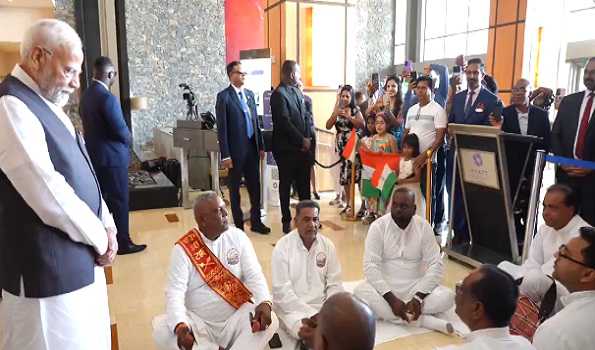
- 07 Jul 2025
In News:
During the recent state visit of the Indian Prime Minister to Trinidad and Tobago, a notable cultural highlight was the performance of the traditional Bhojpuri Chautal, reflecting the deep-rooted Indian heritage in the Caribbean diaspora.
Understanding Chautal
- Chautal (also spelled Chartaal or Chowtaal) is a 12-beat rhythmic cycle (taal) integral to Hindustani classical music.
- It is primarily used to accompany vocal forms such as Dhrupad and Dhamar, as well as instrumental music.
- The term “Chautal” can be interpreted as "four claps", hinting at its vibhag (sectional) structure.
Structural Interpretations:
- One tradition describes it as comprising four vibhags of 4, 4, 2, and 2 beats (matras), respectively.
- An alternative view equates its structure with Ektal, dividing the cycle into six segments of 2 beats each.
Musical Characteristics and Cultural Context
- Chautal is closely associated with the pakhawaj, a barrel-shaped percussion instrument, giving it a powerful and resonant character.
- Unlike the subtle and intricate rhythms of the tabla, Chautal emphasizes strength and gravity in performance.
- Beyond classical settings, Chautal holds cultural significance in Bhojpuri folk traditions, especially during festivals and religious gatherings.
Significance in the Indian Diaspora
The inclusion of Chautal in Trinidad and Tobago’s ceremonial welcome reflects the preservation and celebration of Indian classical and folk arts among overseas Indian communities, particularly those with Bhojpuri ancestry.
Gini Index
- 07 Jul 2025
In News:
According to the World Bank’s Spring 2025 Poverty and Equity Brief, India has emerged as the fourth most equal society globally, with a Gini Index of 25.5—outperforming all G7 and G20 nations. Only the Slovak Republic (24.1), Slovenia (24.3), and Belarus (24.4) rank ahead.
This achievement marks a significant improvement from India’s Gini score of 28.8 in 2011 to 25.5 in 2022, reflecting a steady narrowing of income inequality and growing social equity.
Key Highlights:
Gini Index Comparison (2022-2023):
|
Country |
Gini Index |
|
Slovak Republic |
24.1 |
|
Slovenia |
24.3 |
|
Belarus |
24.4 |
|
India |
25.5 |
|
China |
35.7 |
|
United States |
41.8 |
|
Germany (G7) |
~31.4 |
|
United Kingdom (G7) |
~34.4 |
|
France (G7) |
~32.4 |
|
Japan (G7) |
~32.9 |
Poverty Reduction Achievements:
- 171 million people lifted out of extreme poverty (2011–2023).
- Population living under $2.15/day fell from 16.2% (2011–12) to 2.3% (2022–23).
- Under revised poverty line of $3.00/day, poverty fell to 5.3% in 2022–23.
Drivers of Income Equality:
a) Financial Inclusion:
- Jan Dhan Yojana: Over 55.69 crore bank accounts opened (as of June 2025).
- Enabled Direct Benefit Transfers (DBT), reducing leakages and ensuring targeted welfare.
b) Digital Infrastructure:
- Aadhaar: Over 142 crore issued (as of July 2025), enabling real-time, identity-based service delivery.
- DBT savings: Over ?3.48 lakh crore by March 2023.
c) Universal Healthcare Access:
- Ayushman Bharat: Over 41.34 crore health cards issued.
- Covers ?5 lakh per family/year; now extended to all citizens aged 70+ under Ayushman Vay Vandana.
- Over 32,000 empanelled hospitals ensure access to treatment.
d) Empowerment of Marginalized Communities:
- Stand-Up India: Loans worth ?62,807 crore disbursed to SC/ST and women entrepreneurs.
- PM Vishwakarma Yojana: Nearly 30 lakh artisans registered for credit and marketing support.
Significance for India and the World:
India’s low Gini score demonstrates that economic growth and social equity can be pursued together. The country’s targeted welfare architecture, digital governance tools, and inclusive schemes have created a replicable model for other developing nations.
As global inequality widens, India’s success offers a template for countries seeking to integrate economic reforms with social protection mechanisms to foster inclusive development.
Tokara Islands
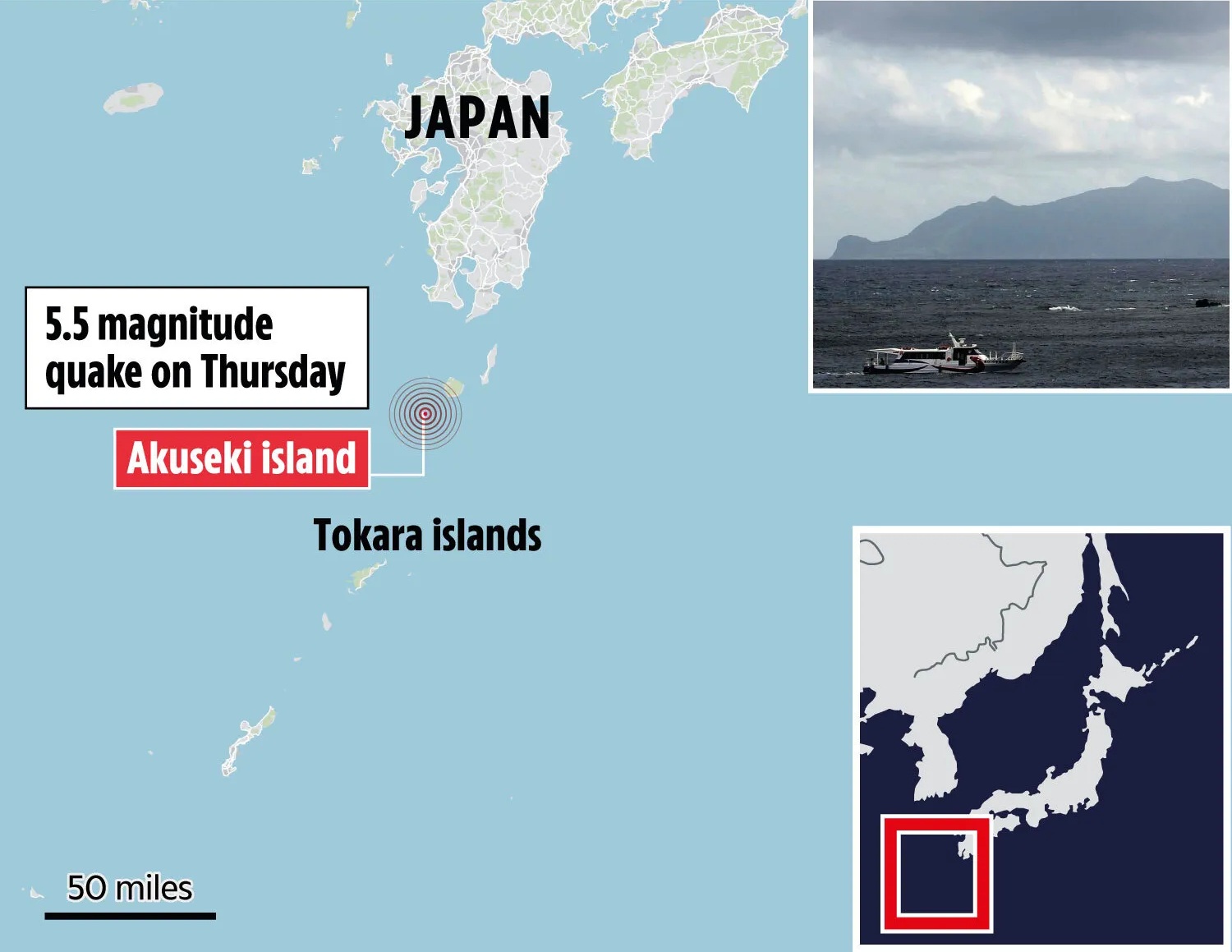
- 07 Jul 2025
In News:
In an unusual seismic episode, over 1,000 earthquakes have struck the Tokara Islands in southern Japan since June 1, 2025, triggering panic, evacuation orders, and heightened concerns about a potential larger earthquake. The persistent tremors—several of which registered magnitudes of 5.5 or higher—have had a significant psychological and logistical impact on the island's residents.
About Tokara Islands:
- Located south of Kyushu and north of the Amami Islands, the Tokara archipelago (also called Toshima Islands) consists of seven inhabited and five uninhabited islands.
- The inhabited islands include Kuchinoshima, Nakanoshima, Suwanosejima, Tairajima, Akusekijima, Kodakarajima, and Takarajima.
- Administered by Toshima Village, it is Japan’s longest village, stretching over 160 km.
- Nakanoshima is the largest and most populated island; it is dominated by Mount Otake (979 m).
- The islands lie in a subtropical-temperate climate zone, receiving around 2,700 mm of rainfall annually.
- Geologically, they are situated in one of the most earthquake-prone zones globally.
Variable Rate Reverse Repo (VRRR)
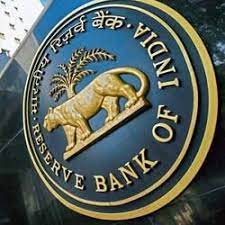
- 07 Jul 2025
In News:
The Reserve Bank of India (RBI) recently carried out a 7-day Variable Rate Reverse Repo (VRRR) auction worth ?1 lakh crore. This measure was taken to manage the surplus liquidity in the banking system, which had surged to approximately ?3.75 lakh crore.
What is VRRR?
The Variable Rate Reverse Repo (VRRR) is a liquidity management tool employed by the RBI to absorb excess funds from commercial banks for a specified period. Unlike the fixed reverse repo rate, the VRRR rate is determined through an auction mechanism, allowing market forces to decide the interest rate.
Key Characteristics:
- Auction-Based Interest Rate: Interest is not fixed but discovered through competitive bidding.
- Time-Bound Operation: Typically conducted for durations like 7, 14, or 28 days.
- Liquidity Management Tool: Helps the RBI withdraw excess liquidity from the financial system.
- Repo Rate Ceiling: The interest rate in VRRR operations cannot exceed the current repo rate.
- Flexible Tenor: RBI may modify the duration of VRRR auctions based on prevailing liquidity conditions.
Objective of VRRR
- To mop up surplus liquidity from the banking system.
- To help regulate short-term interest rates and support effective transmission of monetary policy.
- To foster a market-driven interest rate environment in the short-term interbank market.
How VRRR Functions
- Auction Announcement: RBI declares the amount and duration of the VRRR operation.
- Bid Submission: Banks submit bids with the amount and the interest rate at which they are willing to park funds with RBI.
- Rate Determination: RBI accepts bids at or above the cut-off rate, determined by the auction.
- Interest Earnings: Banks earn interest at the accepted rate over the auction tenure.
Implications of VRRR Operations
- On the Money Market: Tightens liquidity, leading to an uptick in short-term rates such as the call money rate and TREPS.
- On the Bond Market: May cause short-term government and corporate bond yields to rise, increasing borrowing costs.
- On Banks:
- Offers an avenue to earn returns on idle funds, improving short-term profitability.
- Temporarily locks up funds, which may reduce immediate availability for lending or investment.
This mechanism is a vital part of the RBI's toolkit to maintain financial stability and ensure efficient transmission of monetary policy.
3 by 35 Initiative
- 06 Jul 2025
In News:
Amid shrinking official development assistance (ODA) and growing health burdens, the World Health Organization (WHO) has launched the 3 by 35 Initiative—a global call to action to increase taxes on three harmful products: tobacco, alcohol, and sugary drinks. The goal is to raise their real prices by at least 50% by the year 2035, tailored to each country’s context.
Why the Initiative?
- Noncommunicable Diseases (NCDs)—like cardiovascular diseases, cancers, and diabetes—are the leading cause of death and disability worldwide.
- Tobacco use causes over 7 million deaths annually; alcohol and sugary drinks significantly contribute to the global NCD burden.
- Health taxes are a proven strategy to curb harmful consumption while generating domestic revenue for health and development.
Economic Potential:
- A one-time 50% price increase via taxation could generate:
- US$ 3.7 trillion over five years
- ~US$ 740 billion per year (approx. 0.75% of global GDP)
- Estimated to raise US$ 1 trillion in public revenue over the next decade while reducing product consumption.
Key Objectives of 3 by 35:
- Reduce Harmful Consumption:
- Discourage use of tobacco, alcohol, and sugary drinks.
- Mitigate NCDs and associated healthcare costs.
- Mobilize Domestic Revenue:
- Strengthen public financing without reliance on external aid.
- Support progress toward Sustainable Development Goals (SDGs).
- Build Healthier, Resilient Economies:
- Improve economic productivity through healthier populations.
- Channel revenue toward health services, nutrition, and education.
Strategic Actions:
- Mobilize Countries:
- Engage leaders, finance and health ministries, and civil society.
- Provide platforms for peer learning and global recognition.
- Support Country-Led Policies:
- Offer technical support for health tax design, legal reform, and implementation.
- Promote evidence-based, locally tailored solutions.
- Build Commitments and Partnerships:
- Foster multi-sector collaboration and civil society engagement.
- Shift public and political narratives around health taxation.
Governance and Collaboration:
- Led by WHO and supported by:
- National governments
- Civil society and academic institutions
- Development partners and multilateral organizations
C-FLOOD
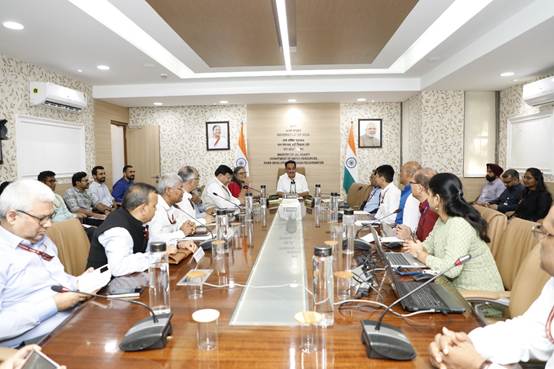
- 06 Jul 2025
In News:
In a significant advancement in disaster risk management, Union Minister of Jal Shakti Shri C.R. Patil inaugurated C-FLOOD, a Unified Inundation Forecasting System. Developed under the National Supercomputing Mission (NSM), C-FLOOD marks a pivotal step toward strengthening India's flood preparedness and mitigation strategy.
What is C-FLOOD?
C-FLOOD is a web-based, real-time flood forecasting platform designed to deliver two-day advance inundation forecasts at village-level resolution. It provides:
- Flood inundation maps
- Water level predictions
- Localized early warnings to support disaster response and planning.
Developing Agencies:
- Centre for Development of Advanced Computing (C-DAC), Pune
- Central Water Commission (CWC)
- National Remote Sensing Centre (NRSC)
Developed in collaboration with the Ministry of Jal Shakti, Ministry of Electronics & IT (MeitY), and Department of Science & Technology (DST).
Key Features:
- 2-Day Village-Level Forecasts: Localized and high-resolution predictions up to the gram panchayat level.
- Advanced 2-D Hydrodynamic Modelling: Simulations run on High-Performance Computing (HPC) systems under NSM.
- Multi-Basin Coverage: Initially operational in the Mahanadi, Godavari, and Tapi river basins, with future expansion planned.
- Unified Data Integration: Combines outputs from national and regional flood models into one platform.
- Disaster Portal Linkage: Designed for integration with the National Disaster Management Emergency Response Portal (NDEM).
- Climate-Adaptive Governance: Supports flood forecasting in regions vulnerable to climate-induced extreme weather events.
Strategic Importance:
- Disaster Risk Reduction: Enables timely warnings, efficient evacuations, and minimizes loss of life and property.
- Scientific & Operational Integration: Bridges hydrological modelling with on-ground responses.
- Supports Viksit Bharat @2047 Vision: Contributes to climate-resilient water governance.
- Promotes Inter-Agency Synergy: Encourages coordination among CWC, C-DAC, NRSC, and disaster management bodies.
Government Directions and Future Path:
During the inauguration, the Union Minister emphasized:
- Wide dissemination of C-FLOOD to enhance public awareness.
- Expansion to all major river basins through comprehensive inundation studies.
- Improved accuracy via satellite data validation and ground-truthing.
- Integration with NDEM for real-time emergency response.
The minister lauded the collaborative spirit of CWC, C-DAC, and NRSC, and reaffirmed the government's commitment to proactive and technology-driven disaster management.
Status of Youth in Agrifood Systems
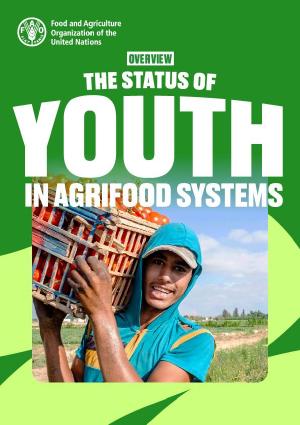
- 06 Jul 2025
In News:
The Food and Agriculture Organization (FAO) has released the “Status of Youth in Agrifood Systems” report, emphasizing that youth empowerment in agriculture could significantly reduce global unemployment and enhance food security, with the potential to boost global GDP by 1.4% (approx. $1.5 trillion).
Key Insights from the Report:
Declining Youth Engagement in Agriculture:
- The share of youth employed in agrifood systems has dropped from 54% in 2005 to 44%, even though many low-income countries remain heavily dependent on youth labour in agriculture.
Youth NEET Crisis:
- Over 20% of global youth (ages 15–24) are Not in Employment, Education, or Training (NEET).
- Young women are twice as likely to fall into this category compared to men.
- Addressing NEET status, particularly among those aged 20–24, could raise global output, with 45% of potential gains stemming from agrifood-related employment.
Urban-Rural Divide:
- 54% of youth now reside in urban areas, while only 5% of rural youth participate in industrial agrifood systems — posing challenges for future agricultural labour availability.
Climate Vulnerability:
- Around 395 million rural youth live in regions projected to experience reduced agricultural productivity due to climate change and extreme weather events.
Rising Food Insecurity Among Youth:
- Youth facing moderate to severe food insecurity has grown from 16.7% (2014) to 24.4% (2023), with severe impacts in Africa and conflict-affected areas.
FAO’s Strategic Recommendations:
Inquire More:
- Close data gaps related to youth roles in agrifood systems.
- Promote evidence-based, youth-responsive policies.
Include More:
- Ensure youth participation in decision-making at local, national, and international levels.
- Foster inclusive governance for both rural and urban youth.
Invest More:
- Job Creation: Facilitate decent employment opportunities on farms and in agrifood value chains.
- System Modernization: Invest in rural infrastructure, digital tools, and agricultural innovation.
- Resource Access: Improve youth access to land, credit, markets, training, and technology.
- Safe Migration: Develop regulated migration pathways for youth involved in agriculture and related sectors.
Russia recognizes Taliban-led Government in Afghanistan
- 06 Jul 2025
In News:
Russia has become the first nation to officially recognize the Taliban-led Islamic Emirate of Afghanistan, formalizing diplomatic relations with the regime that took control in 2021.
Context and Significance:
- This development comes amid limited international recognition of the Taliban government, which took over Kabul in 2021 after the withdrawal of U.S. and NATO forces.
- Russia’s move could reshape regional diplomacy in Central and South Asia, potentially influencing other neighboring powers like China, Iran, and the UAE, which has also shown warming ties.
- The decision also reflects Russia's strategic interests in counterterrorism cooperation, regional stability, and its broader geopolitical competition with the West.
Profile of Russia
Geographical Overview:
- Continent: Northern Eurasia, straddling both Eastern Europe and Northern Asia
- Area: Approximately 17 million square kilometers, making it the largest country in the world
- Time Zones: Spans across 11 time zones
- Capital City: Moscow
Neighbours and Boundaries:
- Land Borders: Shares land borders with 16 countries—more than any other nation:
- In Europe: Norway, Finland, Estonia, Latvia, Lithuania, Poland (via Kaliningrad), Belarus, Ukraine
- In Asia: Georgia, Azerbaijan, Kazakhstan, Mongolia, China, North Korea
- Maritime Borders:
- United States (via the Bering Strait)
- Japan (via the Sea of Okhotsk)
- Major Mountain Ranges:
- Ural Mountains: Traditional boundary between Europe and Asia
- Caucasus Mountains: Includes Mount Elbrus, Europe’s highest peak
- Altai, Sayan, and Kamchatka ranges in Siberia
- Key Rivers and Lakes:
- Volga River: Longest river in Europe
- Lena, Yenisei, and Ob Rivers: Flow through Siberia into the Arctic Ocean
- Lake Baikal: World’s deepest and oldest freshwater lake
- Lake Ladoga: Largest lake in Europe by area
- Climatic and Vegetation Zones:
- Encompasses tundra, taiga (boreal forest), steppes, and semi-deserts
- Permafrost regions in Siberia restrict infrastructure and habitation
Roll Cloud
- 06 Jul 2025
In News:
A striking atmospheric event unfolded over Portugal’s coastline during a severe European heatwave, where beachgoers and weather enthusiasts witnessed a rare roll cloud. The phenomenon occurred as cooler Atlantic air met the hot, dry continental air, producing a visually stunning and scientifically intriguing cloud formation.
What is a Roll Cloud?
A roll cloud is an uncommon, tube-shaped, low-altitude cloud formation that appears to rotate horizontally along its axis. Unlike funnel clouds, it is not connected to any thunderstorm base or rotating system.
Typical Occurrence Zones:
- Frequently spotted in coastal areas, particularly where oceanic and continental air masses interact
- Notably seen in regions like:
- U.S. Great Plains
- Gulf of Carpentaria, Australia (famous for “Morning Glory” clouds)
- Atlantic coasts of Europe
Formation Mechanism:
- Air Mass Interaction: Roll clouds develop when cool, moist maritime air confronts hot, dry air from land, creating instability.
- Temperature Inversion: A thermal inversion layer traps cooler air beneath a warmer layer, suppressing vertical air movement.
- Gravity Waves: As dense cool air undercuts warm air, it creates gravity waves—oscillations within the lower atmosphere.
- Adiabatic Cooling: The ascending portion of the wave cools rapidly, leading to condensation and cloud formation.
- Detached Structure: The cloud remains independent of any parent cloud system, often forming a long, horizontal roll.
Cloud Characteristics:
- Shape: Long, tubular, and low-lying—can stretch over hundreds of kilometers
- Motion: Appears to roll horizontally like a barrel
- Timing: Often forms during early morning hours
- Orientation: Aligns with low-level wind flow, sometimes influenced by sea breeze or nocturnal land breeze fronts
Why are Roll Clouds important?
- Serve as visual indicators of atmospheric instability and changing weather conditions
- Though not hazardous, they reflect mesoscale meteorological processes
- May signal localized shifts in temperature or wind that could precede storm activity in some environments
- Their presence also highlights the interplay between land-sea thermal contrasts, especially relevant in the context of climate variability
Motor Vehicle Aggregator Guidelines (MVAG) 2025
- 05 Jul 2025
In News:
The Ministry of Road Transport and Highways has released the Motor Vehicle Aggregator Guidelines (MVAG), 2025, updating the 2020 norms to accommodate evolving urban transport trends — including bike taxis, electric vehicles (EVs), and app-based autorickshaws.
Overview
- Legal Basis: Formulated under the Motor Vehicles Act, 1988, MVAG provides the regulatory foundation for digital ride-hailing platforms such as Ola, Uber, and Rapido.
- Issuing Authority: Ministry of Road Transport and Highways, Government of India
Key Provisions of MVAG 2025
Driver Welfare and Remuneration
- Revenue Sharing:
- Drivers using own vehicles must receive minimum 80% of the fare.
- For aggregator-owned vehicles, the share must be at least 60%.
- Insurance Requirements:
- Health cover of ?5 lakh
- Term life insurance of ?10 lakh for each driver
- Skill Enhancement: Drivers in the lowest 5% rating bracket to undergo quarterly training
Passenger Safety and Accountability
- Travel Insurance: Mandatory coverage of ?5 lakh per passenger
- Complaint Resolution:
- Issues must be addressed within 3 working days
- Aggregators must notify passengers of outcomes
- Fare Transparency: Charges apply only from pick-up to drop-off location
Fare Regulation and Surge Pricing
- Base Fare Governance: State governments to decide base fare for each vehicle type
- Dynamic Pricing Limits:
- Aggregators may charge as low as 50% below base fare or up to 2x the base fare cap
- Designed to curb excessive surge pricing and ensure fare predictability
Cancellation Penalties
- Symmetrical Accountability:
- 10% penalty (capped at ?100) for riders or drivers cancelling without valid reason
- Acceptable cancellation grounds must be clearly listed on platforms
Legitimisation of Bike Taxis
- Policy Recognition:
- For the first time, private two-wheelers (non-transport motorcycles) may be used for commercial ride services, pending state-level approval
- Legal clarity for platforms operating in regulatory grey zones
EV Integration and Inclusivity
- EV Adoption Targets: States may enforce annual targets for aggregator fleets to switch to electric vehicles
- Accessible Vehicles Mandate: Aggregators must include vehicles equipped to serve persons with disabilities (Divyangjan)
Enhanced Driver Onboarding Standards
- Screening and Health Protocols: Mandatory police verification, medical fitness, and psychological evaluation before onboarding
- Training Mandates: Induction training for new drivers and annual refresher programs for all
Grievance Redressal & Licensing
- Mandatory Officer Appointment: A Grievance Redressal Officer must be designated with contact details published on the platform
- Centralised Licensing Portal: A unified digital portal to streamline aggregator licensing, renewals, and deposit management
Enforcement and Penalties
- Penalty Range: Fines for non-compliance range from ?1 lakh to ?1 crore
- Escalation for Repeat Offences: Repeat violations can lead to license suspension (up to 3 months) and possible revocation
Significance of MVAG 2025
- Aligns India’s mobility ecosystem with sustainable transport goals, passenger safety, and driver welfare
- Encourages EV transition, inclusive access, and regulated digital transport economy
- Brings regulatory clarity for emerging services like bike taxis
RBI’s New Policy on Pre-Payment Charges
- 05 Jul 2025
In News:
In a move aimed at enhancing fair lending practices and improving access to affordable credit, the Reserve Bank of India (RBI) has prohibited pre-payment penalties on floating-rate loans availed by individuals and Micro and Small Enterprises (MSEs). The new norms will come into effect from January 1, 2026, and will apply to all loans and credit facilities sanctioned or renewed on or after this date.
Key Provisions of the RBI Guidelines
Ban on Pre-Payment Charges:
- Applicable to:
- Individuals taking floating-rate loans for non-business purposes, even with co-borrowers.
- Individuals and MSEs availing business loans.
- Individuals taking floating-rate loans for non-business purposes, even with co-borrowers.
- Lenders prohibited from imposing pre-payment penalties include:
- Commercial Banks (except SFBs, RRBs, Local Area Banks)
- Tier 4 Urban Cooperative Banks
- NBFCs in the Upper Layer (NBFC-UL)
- All India Financial Institutions (AIFIs)
- For smaller institutions like Small Finance Banks, RRBs, Tier 3 Urban Cooperative Banks, State and Central Co-op Banks, and NBFCs in the Middle Layer (NBFC-ML), the exemption from pre-payment charges applies to loans up to ?50 lakh.
Early Closure of Overdraft/Cash Credit:
- If the borrower informs in advance and closes the account on time, no pre-closure charges can be levied.
- If the lender requests prepayment, no charges are permitted in such cases either.
Transparency and Disclosure Requirements
- Lenders must clearly disclose the applicability or non-applicability of pre-payment charges in:
- Sanction letters
- Loan agreements
- Key Facts Statement (KFS) (where applicable)
- Any charges not explicitly disclosed as per these guidelines cannot be imposed.
Pre-Payment Without Lock-in
- Pre-payment (partial or full) can be made without any lock-in period, and irrespective of the source of funds.
Rationale Behind the Move
- The RBI noted that inconsistent practices regarding pre-payment fees have led to customer disputes.
- Ensuring easy and affordable finance for MSEs is “of paramount importance,” the central bank emphasized.
Policy Continuity and Legal Update
- All earlier RBI circulars and guidelines regarding pre-payment charges stand repealed.
- The final guidelines were issued after considering public feedback on the draft circular (February 2025).
Significance for MSEs and Borrowers
- Enhances credit mobility and refinancing freedom for borrowers.
- Prevents penalty-driven disincentives for early loan closure.
- Aligns with the RBI’s broader goal of financial consumer protection and MSME support.
Overseas Citizen of India (OCI)
- 05 Jul 2025
In News:
During his official visit to Trinidad and Tobago, the Prime Minister of India announced a significant policy update: Indian-origin persons up to the sixth generation residing in Trinidad and Tobago will now be eligible for the Overseas Citizen of India (OCI) card.
This move strengthens India's outreach to its diaspora, especially in regions with deep-rooted historical ties dating back to indentured migration.
About Overseas Citizen of India (OCI)
What is OCI?
The OCI card is a form of permanent residency granted to foreign nationals of Indian origin, enabling them to live, work, and travel in India without requiring a visa.
- Introduced: August 2005
- Legal Basis: Citizenship (Amendment) Act, 2005
- Administered by: Ministry of Home Affairs, Government of India
- Objective: To foster long-term engagement between India and its diaspora communities by offering them residency and economic/cultural participation rights—without conferring dual citizenship.
Eligibility Criteria (Section 7A of Citizenship Act, 1955)
An individual is eligible if they are a foreign national who:
- Was a citizen of India on or after 26 January 1950,
- Was eligible for Indian citizenship on that date, or
- Belonged to a territory that became part of India after 15 August 1947
Also eligible:
- Children, grandchildren, or great-grandchildren of eligible persons
- Minor children with one or both parents as Indian citizens
- Spouses of Indian citizens or OCI holders, if marriage has lasted 2+ years
Not eligible if: The individual or their ancestors were ever citizens of Pakistan, Bangladesh, or other countries notified by the Indian government
Key Features of the OCI Card
- Lifelong, multiple-entry visa to India
- No police reporting required, regardless of duration of stay
- Work and study rights similar to Indian citizens (no separate visa needed)
- Economic parity with NRIs in areas such as:
- Education (e.g., admissions, fee structure)
- Financial services and bank accounts
- Real estate (excluding agricultural land)
- Can buy residential and commercial property in India
- Not eligible for:
- Voting rights
- Holding constitutional posts (e.g., President, MP, Judge)
- Government employment
- Digital-friendly: Application, renewal, and status tracking available via the official OCI Portal
Significance of the Latest Announcement
- Extending OCI eligibility to the sixth generation acknowledges the deep historical diaspora links between India and the Caribbean, particularly descendants of indentured laborers.
- This strengthens India's soft power, promotes people-to-people diplomacy, and enhances economic and cultural ties with Indian-origin communities abroad.
India’s First Transgender Clinic

- 05 Jul 2025
In News:
India’s first healthcare facility entirely led and managed by transgender individuals — formerly known as Mitr Clinic — has reopened in Hyderabad under a new name, Sabrang Clinic, after a brief closure in January 2025 due to a USAID funding freeze.
Launched in 2021 in Narayanguda, Mitr Clinic was a pioneering initiative providing trans-affirmative healthcare services, and was notable for being completely staffed by members of the transgender community. Over 3,000 patients were served during its initial phase.
Revival and Funding
- Funding Setback: Operations were suspended in January 2025 following the withdrawal of USAID support.
- Renewed Support: The clinic resumed services in May 2025 after securing three-year funding from Tata Trusts, at a rate of ?1,500 per person per year (compared to ?1,900 under USAID).
- Supporting Partners: Core clinical staff is now funded by Tata Trusts, while senior positions are jointly supported by YRG Care, an NGO associated with the earlier model.
Current Setup and Services
Services Offered:
- General health services
- Counselling and clinical consultations for:
- Hormone Replacement Therapy (HRT)
- Gender Affirmation Surgeries
- Breast Augmentation
- Mental Health
- HIV/STI testing and treatment
- Psychological support
Clinic Team:
- 1 Medical Officer
- 1 Nurse
- 1 Counsellor
- 2 Outreach Workers
Operating Hours: Monday to Saturday, 10 a.m. – 6 p.m.
During the shutdown, the team continued online consultations and medicine delivery, sustaining community outreach until new funding was secured.
Legacy and Policy Impact
- The Telangana Government, inspired by Mitr Clinic’s model, launched Maitri Clinics in all 33 districts, adopting a trans-inclusive healthcare approach.
- While collaboration with State agencies was considered, the Sabrang team opted for independent operation to ensure quicker service resumption and retain community trust.
Expanded Vision: Why ‘Sabrang’?
- The new name, Sabrang (meaning "all colours"), reflects a broader, inclusive healthcare mission.
- It now aims to serve not only transgender persons but also queer, gender-diverse, and other marginalized groups who face similar healthcare barriers.
Chemical Industry – Powering India’s Participation in Global Value Chains

- 05 Jul 2025
In News:
NITI Aayog has released a comprehensive report envisioning India’s transformation into a global chemical manufacturing hub with a projected 12% share in global value chains (GVCs) and USD 1 trillion in output by 2040.
Current Landscape of India’s Chemical Industry
- Significant Economic Contributor: India is the 6th largest chemical producer globally and 3rd in Asia, contributing over 7% to manufacturing GDP. Key linkages: Pharmaceuticals, textiles, agriculture, and construction.
- Fragmented Sector Structure: Dominated by MSMEs, the sector suffers from lack of integrated value chains and modern infrastructure. Example: Cluster-based growth is concentrated in Gujarat, Maharashtra, and Tamil Nadu.
- Low Global Integration: India’s 3.5% share in global chemical value chains reflects weak backward integration and poor export competitiveness. The trade deficit in 2023 was USD 31 billion.
- High Import Dependence: Heavy reliance on China and Gulf countries for feedstocks and specialty chemicals. Example: Over 60% of critical Active Pharmaceutical Ingredients (APIs) are sourced from China.
- Negligible R&D Investment: India invests only 0.7% of industry revenue in R&D, far below the global average of 2.3%, limiting innovation in green and specialty chemicals.
- Regulatory and Procedural Hurdles: Environmental clearance (EC) delays (up to 12–18 months) and procedural bottlenecks lead to cost and time overruns.
- Skilling Deficit:
A 30% shortage of skilled professionals in green chemistry, process safety, and nanotechnology. Example: ITIs and vocational programs lag behind industry requirements.
Emerging Opportunities
- Green Chemistry Revolution: Global shift toward sustainable chemicals presents new market opportunities.
- Geopolitical Realignment: Rising distrust of China globally enables India to emerge as an alternate supplier.
- FTA Leverage: India’s Free Trade Agreements (FTAs) with UAE, EU, and ASEAN can enhance tariff-free access to major markets.
- Make in India Ecosystem: Policy support through PLI schemes, Petroleum, Chemicals and Petrochemicals Investment Regions (PCPIRs), and chemical parks.
- Job Creation Potential: The sector could generate 7 lakh skilled jobs by 2030, particularly in petrochemicals, research, and logistics.
Persistent Challenges
- Feedstock Vulnerability: Over-dependence on crude oil and naphtha imports poses price and supply risks.
- Outdated Industrial Clusters: Legacy clusters lack modern safety systems, storage infrastructure, and waste treatment facilities.
- High Logistics Costs: Freight costs are 2–3 times higher than global averages, reducing export competitiveness.
- Regulatory Complexities: Absence of single-window clearances, frequent policy shifts, and inter-state inconsistencies deter investments.
- Weak Industry-Academia Linkages: Poor collaboration leads to low patent output and limited skill development.
NITI Aayog’s Recommendations
- Develop World-Class Chemical Hubs: Upgrade existing clusters and establish empowered committees. Suggested hubs: Paradeep, Dahej, Vizag. Introduce a dedicated Chemical Infrastructure Fund.
- Opex-Based Incentives: Offer operational subsidies linked to import substitution and export potential.
- Boost Technology Access & R&D:
- Establish an industry-academia interface under the Department of Science and Technology (DST).
- Enable technology transfer from global MNCs.
- Streamline Environmental Clearances:
- Simplify processes via DPIIT audit mechanisms.
- Ensure greater transparency and faster approvals.
- Strengthen Skill Development:
- Expand and modernize ITIs and specialized institutes.
- Introduce tailored courses in polymer science, green chemistry, and process safety.
- Negotiate Chemical-Specific FTAs:
- Incorporate product-specific clauses.
- Simplify rules of origin and documentation processes.
Kolhapuri Chappals

- 04 Jul 2025
In News:
Italian luxury fashion house Prada, after public criticism, has acknowledged that its Men’s Spring/Summer 2026 collection sandals were inspired by India’s traditional handcrafted footwear — the Kolhapuri chappals, a product with Geographical Indication (GI) status.
About Kolhapuri Chappals
Origin:
- Named after Kolhapur city in Maharashtra, India
- Handcrafted tradition dates back to the 13th century
Design & Craftsmanship:
- Made from 100% leather (cow, buffalo, or goat)
- Vegetable-tanned using natural dyes – non-toxic and eco-friendly
- Typicallyopen-toed with a T-strap design
- Traditionally in tan and brown shades with oil, natural, or polish finishes
- Time-intensive craftsmanship – can take up to six weeks per pair
Cultural & Economic Value:
- Recognised under the Geographical Indications (GI) Act of India
- Symbol of sustainable fashion, durability, and local artisanal skill
- Leather molds to feet over time, ensuring custom comfort and longevity
The Controversy: Cultural Appropriation vs Cultural Inspiration
- Criticism emerged after Prada launched sandals resembling Kolhapuris without credit
- Public and media backlash led to acknowledgement of Indian inspiration
- Highlights the importance of:
- Ethical recognition of traditional knowledge and cultural heritage
- Protection of GI-tagged products from unauthorized imitation
- Global awareness of India’s artisanal heritage
Financial Stability Report – June 2025
- 04 Jul 2025
In News:
The Reserve Bank of India (RBI) recently released the Financial Stability Report for June 2025.
What is the Financial Stability Report (FSR)?
- The Financial Stability Report (FSR) is a biannual publication by the Reserve Bank of India (RBI).
- It presents the collective assessment of the Sub-Committee of the Financial Stability and Development Council (FSDC-SC) regarding:
- Resilience of the Indian financial system
- Emerging systemic risks
- Outlook for macro-financial stability
Key Highlights – FSR June 2025
Macroeconomic & Global Outlook
- India remains a key driver of global growth, supported by strong macroeconomic fundamentals and prudent policies.
- Risks to growth include:
- Prolonged geopolitical tensions
- Trade and supply chain disruptions
- Weather-related uncertainties impacting agricultural output
Banking Sector Performance
- Gross Non-Performing Asset (GNPA) ratio:
- Stands at 2.3% as of March 2025, a multi-decadal low
- May rise modestly to 2.5% in baseline and 2.6% under adverse conditions by March 2027 (based on stress tests on 46 banks covering 98% of SCB assets)
- Capital Adequacy Ratios (CAR):
- Remain well above regulatory thresholds across the sector
- Even under severe stress scenarios, banks maintain adequate buffers — indicating robust financial health
Non-Banking Financial Companies (NBFCs)
- NBFCs are in good financial health with:
- Strong capital buffers
- Robust earnings
- Improving asset quality
- Continued financial resilience contributes to the overall stability of the financial system
Domestic Demand and Inflation Outlook
- Growth remains domestically driven
- Food inflation outlook favorable:
- Price moderation observed
- Crop output at record levels, supporting price stability
Significance for Financial Policy
- The report signals that India’s financial institutions are resilient and well-equipped to absorb economic shocks
- RBI's stress-testing framework confirms systemic soundness
- Reinforces India's investor confidence, especially in volatile global conditions
Research Development and Innovation (RDI) Scheme
- 04 Jul 2025
In News:
The Union Cabinet, chaired by the Prime Minister, has approved the Research Development and Innovation (RDI) Scheme with a corpus of ?1 lakh crore to strengthen India’s innovation ecosystem and boostprivate sector R&D investments.
Objective of the RDI Scheme
The scheme is designed to:
- Provide long-term financing or refinancing at low or nil interest rates
- Stimulate private sector investment in R&D and innovation
- Overcome existing funding challenges for private research
- Support sunrise and strategic sectors to drive:
- Innovation
- Technology adoption
- National competitiveness
- Economic security and self-reliance
Key Aims
- Encourage private sector participation in high-TRL (Technology Readiness Level) R&D projects
- Fund transformative innovation in sunrise domains
- Enable acquisition of critical and strategic technologies
- Facilitate the establishment of a Deep-Tech Fund of Funds (FoF)
Funding Structure
The RDI Scheme will operate on a two-tiered funding mechanism:
First Tier: Special Purpose Fund (SPF) under ANRF
- Housed within the Anusandhan National Research Foundation (ANRF)
- Acts as the primary custodian of funds
Second Tier: Fund Allocation & Disbursal
- SPF will allocate funds to multiple 2nd-level fund managers
- Mode of financing:
- Long-term concessional loans (low or nil interest)
- Equity financing, particularly for startups
- Contributions to Deep-Tech Fund of Funds (FoF) or other RDI-focused FoFs
Governance & Implementation
- Governing Board of ANRF (chaired by the Prime Minister): Provides strategic direction
- Executive Council (EC) of ANRF:
- Approves scheme guidelines
- Recommends fund managers
- Determines project types and sectors
- Empowered Group of Secretaries (EGoS):
- Led by the Cabinet Secretary
- Approves scheme changes, sectors, fund managers
- Monitors performance of the scheme
- Nodal Department:Department of Science and Technology (DST) is the nodal ministry for implementation.
Employment Linked Incentive (ELI) Scheme

- 04 Jul 2025
In News:
The Employment Linked Incentive (ELI) Scheme is a flagship initiative of the Government of India aimed at formal job creation, especially for youth and in the manufacturing sector. It was announced in the Union Budget 2024–25 and came into implementation following cabinet approval.
Recent Update (July 2025 Cabinet Decision)
- EPFO registrationand Aadhaar seeding deadline:30 June 2025
- Job coverage period:1 August 2025 – 31 July 2027
Objectives
- Promote formal employment by incentivising employers
- Encourage first-time EPFO registration for workers
- Target high employment-generating sectors like manufacturing
- Provide direct income support and EPFO reimbursement subsidies
Key Components – 3 Schemes under ELI
|
Scheme |
Focus |
Key Beneficiaries |
Duration |
Central Outlay |
Estimated Beneficiaries |
|
Scheme A |
First-time employment |
New EPFO-enrolled youth |
3 years |
?23,000 crore |
210 lakh |
|
Scheme B |
Job creation in manufacturing |
Employers hiring ≥50 non-EPFO workers |
6 years |
?52,000 crore |
30 lakh |
|
Scheme C |
Support to employers |
All employers creating net new jobs |
6 years |
?32,000 crore |
50 lakh |
Detailed Scheme Benefits & Conditions
Scheme A: First-Time Employment
- Direct cash benefit: ?15,000 (?7,500 x 2 instalments)
- 1st installment: After 6 months of continuous EPFO-linked employment
- 2nd installment: After 12 months + completion of financial literacy course
- Condition: Exit before 12 months = employer must refund benefit
Scheme B: Job Creation in Manufacturing
- Eligibility: Employer must have 3-year EPFO record; hire ≥50 non-EPFO or 25% baseline
- Salary cap for subsidy: ?25,000/month (overall salary ≤ ?1 lakh)
- Incentive structure:
- Year 1: 24% of salary (employee + employer EPFO contribution)
- Year 2: 24%
- Year 3: 16%
- Year 4: 8%
- Refund clause: If employee leaves before 12 months
Scheme C: Support to Employers
- Eligibility:
- Employers with <50 workers: Hire ≥2 net new
- ≥50 workers: Hire ≥5 net new
- Subsidy per employee/month:
- ?1,000 (salary ≤ ?10,000)
- ?2,000 (?10,001–?20,000)
- ?3,000 (?20,001–?1 lakh)
- Duration: 2 years, extendable to 4 years for large job creators
Eligibility Criteria
- Employees:
- Salary < ?1 lakh/month
- Must be EPFO-registered with Aadhaar–UAN–bank linkage
- Employers:
- Must create net new jobs over EPFO baseline
- For Scheme B: 3-year EPFO record required
Application Process (Current Status)
- No dedicated ELI portal yet
- Via EPFO portal:
- UAN activation and Aadhaar seeding
- Employer-led EPFO registration
- Completion of Financial Literacy Course (for Scheme A)
Significance
- Reduces informal employment
- Supports youth entering formal jobs for the first time
- Incentivises hiring in labour-intensivemanufacturing
- Promotes EPFO inclusion and financial literacy
Challenges
- Compliance burden on small enterprises
- Ensuring retention to avoid refund liabilities
- Monitoring duplication between schemes
- Delay in scheme-specific digital portal rollout
E-Voting System

- 04 Jul 2025
In News:
For the first time in India, e-voting through a mobile app was used in the Bihar municipal elections (June 28, 2025) for six municipal councils in Patna, Rohtas, and East Champaran districts.
About the E-Voting System
- App Used:E-SECBHR, developed by Centre for Development of Advanced Computing (C-DAC)
- Target Groups:
- Senior citizens
- Persons with disabilities
- Pregnant women
- Others unable to reach polling booths
How It Works
- Installation: App available for Android users.
- Registration: Voter must link mobile number as per the electoral roll.
- Verification: Through voter ID number and facial recognition.
- Voting: Vote via app or Bihar Election Commission’s website on polling day.
Security Measures to Ensure Fairness
- Limited Logins: One mobile number can be used by only two registered voters.
- Facial Recognition: Used to verify identity during login and voting.
- Blockchain Technology:
- Ensures immutability of vote data.
- Prevents tampering or alteration of records.
National Turmeric Board Inaugurated in Telangana
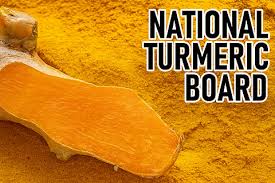
- 03 Jul 2025
In News:
The Union Home Minister inaugurated the headquarters of the National Turmeric Board in Nizamabad, Telangana, addressing a long-standing 40-year demand of turmeric farmers in the region.
About the National Turmeric Board (NTB):
- Established by: Government of India
- Status: Statutory body
- Location:Headquartered in Nizamabad, Telangana – popularly known as the "Turmeric Capital of India"
Administrative Oversight:
- Functions under the Ministry of Commerce and Industry
- Operates in coordination with the Ministries of AYUSH, Agriculture, Pharmaceuticals, and Cooperation
Governing Composition:
- Chairperson appointed by the Central Government
- Secretary from the Department of Commerce
- Members from:
- Relevant central ministries
- Turmeric-producing states (e.g., Telangana, Maharashtra, Meghalaya)
- Farmer groups, exporters, and research institutions
Objectives of the Board:
- Promote value addition, branding, and marketing of turmeric products
- Ensure better prices to farmers by reducing intermediaries
- Promote global recognition of turmeric’s medicinal value
- Upgrade logistics and quality infrastructure to meet global standards
- Support training, research, and skill development in turmeric cultivation and utilization
Key Functions:
- Develop an end-to-end export ecosystem for turmeric
- Promote GI-tagged organic turmeric in international markets
- Ensure compliance with global food and safety standards
- Coordinate with the Spices Board, National Cooperative Exports Ltd., and other cooperatives for export promotion
Turmeric in India: An Overview
Botanical Information:
- Scientific Name:Curcuma longa
- A rhizomatous herbaceous plant, valued for its use in cooking, dyeing, and traditional medicine
- Commonly known as the "Golden Spice"
Agro-Climatic Conditions:
- Grown in tropical climates, requires 20–30°C temperature and high rainfall
- Prefers well-drained loamy soils
- Cultivated under both rain-fed and irrigated conditions
Production and Exports (2022–23):
- Area under cultivation: 3.24 lakh hectares
- Total production: 11.61 lakh tonnes
- India's global share: Over 75% of world turmeric production
- Varietal diversity: Over 30 indigenous varieties cultivated
- Exports: 1.53 lakh tonnes valued at USD 207.45 million
- Target: USD 1 billion in turmeric exports by 2030
- Top export destinations:Bangladesh, UAE, USA, Malaysia
CRISPR-Based Gene Switch for Climate-Resilient Agriculture

- 03 Jul 2025
In News:
Scientists at the Bose Institute, Kolkata, under the Department of Science and Technology (DST), have developed a modified CRISPR-based molecular tool to enhance plant resilience against heat stress and bacterial infections. The research is published in the International Journal of Biological Macromolecules.
What is the Innovation?
- The tool is a modified version of the CRISPR system called dCas9 (dead Cas9), which does not cut DNA.
- Instead, it functions as a stress-responsive gene switch, turning defense and heat-tolerance genes on or off only when the plant is under stress (e.g., high temperature or pathogen attack).
How Does It Work?
- The switch is held outside the plant cell’s nucleus using a tomato-derived protein domain (NACMTF3 TM domain).
- Under stress conditions, such as heat waves or bacterial infection, the tether is released.
- The dCas9 switch then enters the nucleus, activating genes that help the plant combat the stress.
Key Functional Genes Activated:
|
Gene |
Function |
|
CBP60g, SARD1 |
Activate immune response to bacterial infection (e.g., Pseudomonas syringae) |
|
NAC2, HSFA6b |
Enhance heat tolerance, retain water, and improve overall health |
Salient Features of the Tool:
- Non-invasive: Unlike traditional CRISPR, this version does not edit the DNA, making it safer and more acceptable.
- Energy-efficient: The switch is activated only when needed, minimizing unnecessary energy use by the plant.
- Dual Protection: Shields plants from both heat stress and pathogenic infections.
- Eco-friendly and crop-compatible: Based on naturally occurring proteins, tested successfully in tomato, potato, and tobacco.
Significance and Impact:
- Climate-Resilient Agriculture: Helps plants survive in rising temperatures and unpredictable weather.
- Food Security: Boosts productivity in solanaceous crops like tomato, potato, brinjal, and chilli.
- Smart Farming Solution: Offers a model for sustainable and precision agriculture globally.
- Global Applicability: Can be adapted to other food crops affected by climate change and disease outbreaks.
Hong Kong International Convention (HKC)
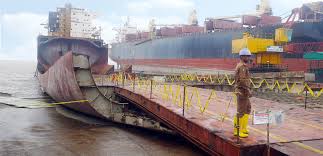
- 03 Jul 2025
In News:
The Hong Kong International Convention (HKC) for the safe and environmentally sound recycling of ships officially came into force on June 26, 2025.
About HKC:
- The HKC is a global treaty adopted under the aegis of the International Maritime Organization (IMO) to regulate the safe and environmentally sustainable recycling of ships that have reached the end of their operational life.
Objectives:
- Protect human health, especially that of shipbreaking workers.
- Prevent environmental pollution during ship dismantling.
- Control and manage hazardous materials such as asbestos, heavy metals, and hydrocarbons.
- Ensure safe waste handling and disposal practices in recycling yards.
Key Provisions:
- Inventory of Hazardous Materials (IHM):Ships must maintain an IHM listing all hazardous substances on board.
- Ship Recycling Plan (SRP):A certified SRP must be approved before the ship is sent for dismantling.
- Recycling Completion Certificate:Recycling facilities must issue this certificate within 14 days of dismantling completion.
- Third-Party Audits and Certification:Classification societies recognized by the IMO will conduct compliance audits and issue relevant certifications.
- Authorized Recycling Yards:The convention promotes the use of regulated and approved facilities for ship recycling to ensure compliance with international safety and environmental norms.
Significance:
- Strengthens global maritime safety and sustainable shipbreaking practices.
- Encourages modernization and regulation of recycling yards, especially in developing countries like India and Bangladesh.
- Aligns ship recycling with UN Sustainable Development Goals (SDGs), particularly those on health, environment, and decent work.
Operation Deep Manifest
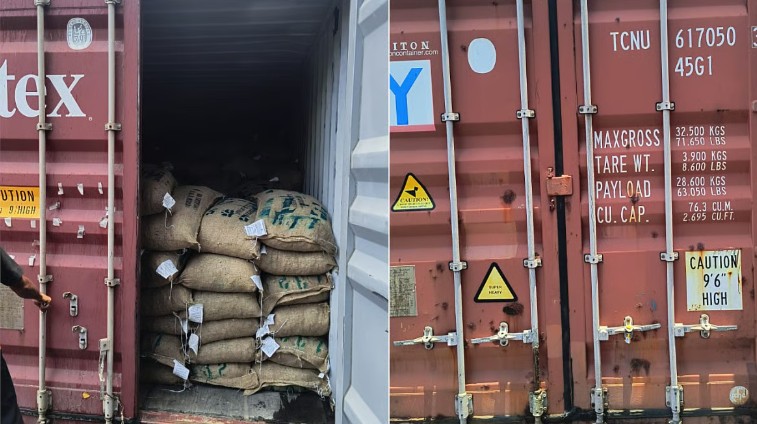
- 03 Jul 2025
In News:
The Directorate of Revenue Intelligence (DRI), under the Central Board of Indirect Taxes and Customs (CBIC), Ministry of Finance, launched “Operation Deep Manifest”, resulting in the seizure of Pakistani-origin goods worth ?9 crore.
Key Highlights:
- Seizure Details:39 containers carrying 1,115 metric tonnes of goods—primarily dry dates—were intercepted at Nhava Sheva Port. These goods were falsely declared as originating from the UAE.
- Route Manipulation:The consignments were illicitly routed via Dubai’s Jebel Ali Port after being shipped from Karachi, Pakistan, to obscure their true origin. Shipping documents were falsified and containers were switched during transshipment to evade detection.
- Violation of Policy:This seizure comes after India’s comprehensive ban on Pakistani-origin goods, which took effect on May 2, 2025, following the Pahalgam terror attacks. This replaced the earlier 200% customs duty imposed post-Pulwama (2019) and represents a zero-tolerance economic policy toward Pakistan.
- Financial and Security Links:Investigations uncovered financial linkages with Pakistani and UAE-based entities, pointing to an organized smuggling network with possible illicit financial flows and national security implications.
- Enforcement Action:A partner from one of the importing firms was arrested on June 26, and further criminal and financial investigations are ongoing.
Significance:
- National Security:Helps prevent economic infiltration from hostile states and curbs funding channels that could support anti-national activities.
- Trade Compliance:Acts as a deterrent against third-country transshipment—a common method to bypass sanctions or import bans.
- Tech-Driven Enforcement:Utilized document forensics, data analytics, and container surveillance to detect misdeclarations and track suspect cargo routes.
- Reinforces Policy Posture:Strengthens India's position of economic disengagement with Pakistan in response to cross-border terrorism.
Cell Broadcast System
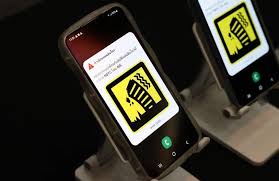
- 03 Jul 2025
In News:
The Department of Telecommunications (DoT), in collaboration with the National Disaster Management Authority (NDMA), is piloting a Cell Broadcast (CB) system to enhance emergency communication and deliver real-time disaster alerts across India.
What is the Cell Broadcast System?
Cell Broadcasting is a telecommunication technology that enables mobile network operators to send geographically targeted text alerts to all mobile devices in a specific area. Unlike traditional SMS, CB messages are broadcast simultaneously to all phones within a cell tower’s coverage, ensuring instant delivery even during network congestion.
Key Features and Benefits:
- Instantaneous alerts during emergencies like earthquakes, tsunamis, lightning strikes, and industrial disasters.
- Indigenously developed by the Centre for Development of Telematics (C-DOT).
- Language inclusivity: Messages can be broadcast in multiple Indian languages.
- Particularly effective in high-density areas and during network overloads.
Integration with Existing Systems:
This CB system complements the existing Integrated Alert System (SACHET), which:
- Has delivered over 6,899 crore SMS alerts.
- Covers all 36 States and Union Territories.
- Supports 19 Indian languages.
- Is based on the Common Alerting Protocol (CAP) as recommended by the International Telecommunication Union (ITU).
Once fully deployed, the Cell Broadcast system will strengthen India’s disaster preparedness, ensuring wider, faster, and more inclusive dissemination of critical alerts.
Magnetic Resonance-guided Focused Ultrasound (MRgFUS) technology

- 02 Jul 2025
In News:
India has recently introduced Magnetic Resonance-guided Focused Ultrasound (MRgFUS) technology, marking a significant advancement in non-invasive neurological treatment. This technique is now being offered in select hospitals, providing new hope for patients suffering from Essential Tremor (ET) and Tremor-Dominant Parkinson’s Disease (TD-PD) — two common but debilitating neurological disorders.
What is MRgFUS?
MRgFUS is a non-surgical, incisionless medical intervention that uses high-intensity focused ultrasound energy, guided by real-time MRI, to target and ablate precise regions of brain tissue responsible for tremors, especially in the thalamus, a key brain relay centre.
Unlike traditional procedures like Deep Brain Stimulation (DBS) that require surgery and implants, MRgFUS is performed without any cuts or anaesthesia and allows immediate symptom relief with minimal recovery time.
Key Features of MRgFUS
- Incisionless procedure: No need for surgical opening of the skull
- MRI-guided precision: Real-time monitoring and adjustment
- Rapid recovery: Hospital stay of 1–2 days
- No implants or batteries: One-time treatment
- Immediate results: Visible tremor relief during the procedure itself
Medical Significance
Essential Tremor (ET):
- Affects ~1% of global population
- Incidence increases with age: ~5% of people over 60
- Not life-threatening but impairs daily life — eating, writing, speaking
- Leads to social isolation, anxiety, and functional disability
MRgFUS offers a safe, effective, and non-invasive solution for patients who are unwilling or unfit for brain surgery.
Availability in India
MRgFUS has been introduced in several advanced medical centres:
- Sir Ganga Ram Hospital, Delhi – First private hospital in North India to offer the procedure
- AIIMS, Delhi – First government institution to adopt it
- Royal Care Super Speciality Hospital, Coimbatore – Pioneer centre in India
- KIMS Hospitals, Telangana
As of mid-2025, over 200 patients in India have undergone the procedure successfully, with more than 25,000 globally.
Cost and Duration
- Procedure Cost: ?19–23 lakh
- Duration: 1–3 hours
- Performed by: A multidisciplinary team of neurologists, neurosurgeons, and neuroradiologists
Global Context and Technological Backing
- Insightec, a global leader in MRgFUS technology, is facilitating its expansion in India.
- The company is also exploring new clinical applications for the same technology in other neurological disorders beyond ET and Parkinson’s.
India Energy Stack (IES)
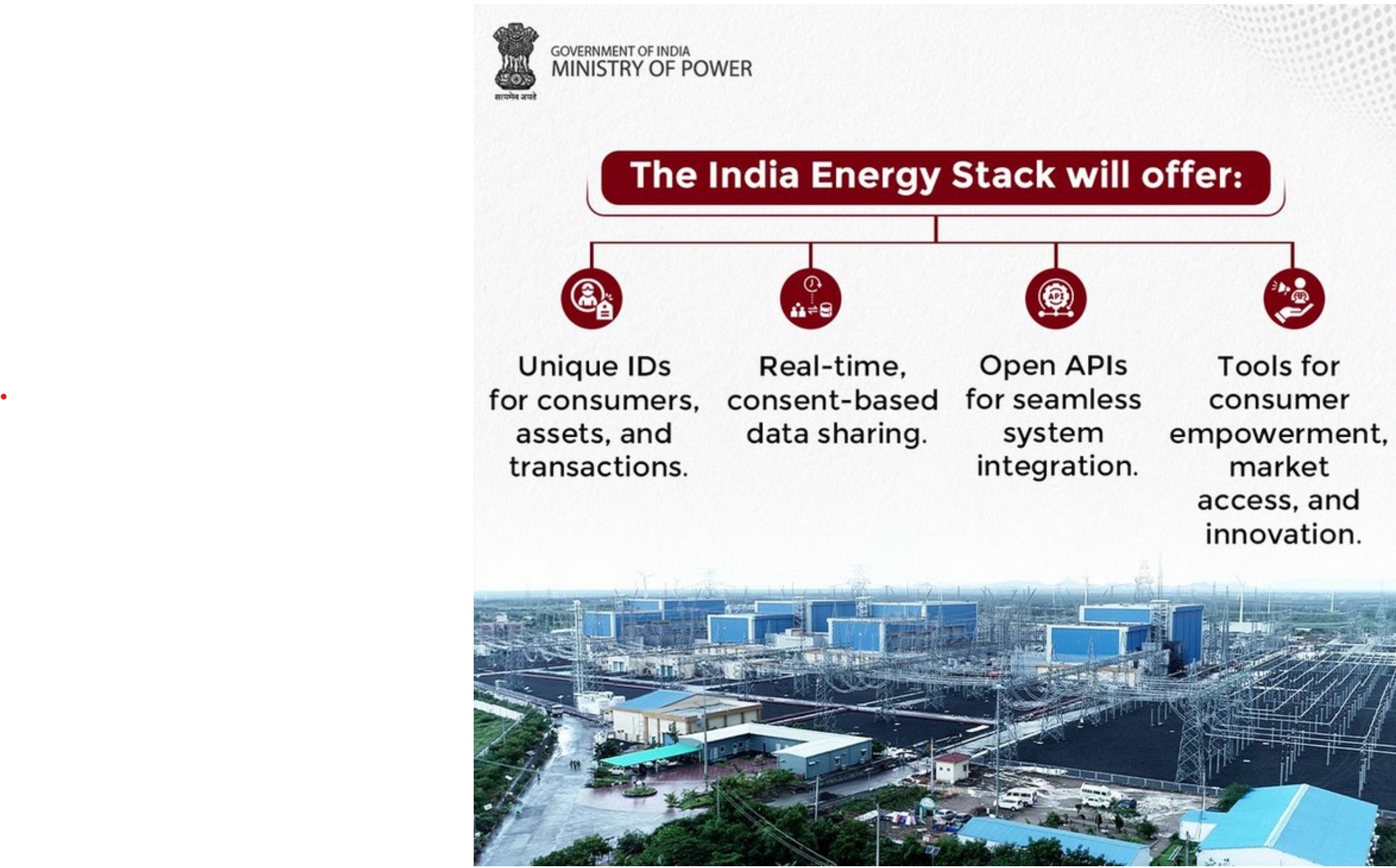
- 02 Jul 2025
In News:
In a transformative move aimed at digitising India’s power sector, the Ministry of Power has announced the conception of the India Energy Stack (IES) — a Digital Public Infrastructure (DPI) initiative designed to build a unified, secure, and interoperable digital ecosystem across the energy value chain.
This effort aligns with India’s goals of achieving a $5 trillion economy and meeting its Net Zero commitments, while addressing the growing complexities of a rapidly evolving energy landscape marked by renewables, electric vehicles, and consumer-centric markets.
What is India Energy Stack (IES)?
The India Energy Stack is envisioned as a standardised, open, and secure digital infrastructure to:
- Streamline operations in the power sector
- Empower consumers with access to real-time, consent-based data
- Integrate renewable energy into the national grid
- Enhance the efficiency of Distribution Companies (DISCOMs)
The initiative is spearheaded by the Ministry of Power, drawing inspiration from successful DPI models like Aadhaar (identity) and UPI (digital payments).
Core Features of IES
- Unique IDs: Assigned to consumers, assets, and energy transactions
- Real-time Data Sharing: Consent-based access for secure and accountable data exchange
- Open APIs: Enabling seamless integration across utility systems and third-party applications
- Consumer Empowerment Tools: Market access platforms, billing transparency, demand response options, and innovation support
- Interoperability: Standardised protocols for all stakeholders in the electricity ecosystem
Implementation Strategy
1. Proof of Concept (PoC) – 12 Months
A year-long pilot phase will test the India Energy Stack using real-world scenarios in partnership with selected utilities and DISCOMs.
2. Utility Intelligence Platform (UIP)
The UIP is a modular, analytics-driven application built on the India Energy Stack. It aims to:
- Provide real-time insights to utilities, policymakers, and regulators
- Enable smart energy management
- Enhance decision-making for grid operations and consumer services
3. Pilot Regions
The PoC will be conducted in collaboration with DISCOMs in:
- Mumbai
- Gujarat
- Delhi
Institutional Framework
- A dedicated Task Force has been established by the Ministry of Power.
- It includes experts from:
- Technology domain
- Power sector operations
- Regulatory bodies
- The Task Force will guide:
- System architecture design
- Pilot implementation
- National scale-up strategy
Expected Outcomes
- India Energy Stack White Paper for public consultation
- UIP deployment in pilot cities
- National roadmap for phased rollout of IES across all states and UTs
- Improved grid stability, energy access, and transparency in service delivery
- Enhanced integration of renewable energy sources into the mainstream grid
Significance for India’s Power Sector
The India Energy Stack has the potential to be a game-changer for the power sector, enabling:
- Modernisation of legacy systems
- Digital empowerment of consumers
- Efficient energy trading and billing
- Decentralised and democratised power governance
As India undergoes its green energy transition, IES will serve as the digital spine supporting clean, accountable, and consumer-centric power distribution.
At Sea Observer Mission

- 02 Jul 2025
In News:
In a major milestone for regional security, the QUAD nations — India, Japan, the United States, and Australia — have launched their first-ever 'At Sea Observer Mission'. This cross-embarkation initiative, conducted under the Wilmington Declaration, seeks to deepen maritime interoperability, operational coordination, and domain awareness in the Indo-Pacific region.
This move signifies the QUAD’s growing shift from diplomatic coordination to practical maritime collaboration, in line with the vision outlined at the QUAD Leaders’ Summit in September 2024.
Key Features of the At Sea Observer Mission
- Participating Nations: India, Japan, USA, and Australia — the four QUAD countries.
- Agencies Involved:
- Indian Coast Guard (ICG)
- Japan Coast Guard (JCG)
- United States Coast Guard (USCG)
- Australian Border Force (ABF)
- Vessel Involved:USCGC Stratton (US Coast Guard Cutter) currently en route to Guam.
- Observer Teams: Two officers from each country, including women officers, embarked for the mission.
- Format:Cross-embarkation, where officers from different countries are hosted on board a partner nation's ship to enable firsthand operational learning.
Objectives and Strategic Relevance
- Strengthening Maritime Security
- Promotes collective surveillance, intelligence sharing, and maritime law enforcement.
- Enhances preparedness against common threats such as illegal fishing, piracy, smuggling, and disaster response.
- Boosting Interoperability and Coordination
- Lays groundwork for real-time joint operations and coordinated patrols.
- Encourages standardization of practices and communication protocols across QUAD navies and coast guards.
- Upholding the Rules-Based Order: Reinforces commitment to a Free, Open, Inclusive, and Rules-Based Indo-Pacific, countering unilateral actions and grey-zone threats in the region.
Indian Perspective: SAGAR and IPOI
India’s participation in the mission reflects its broader strategic vision of SAGAR (Security and Growth for All in the Region). It also aligns with India’s leadership in the Indo-Pacific Oceans Initiative (IPOI), particularly in the pillars of:
- Maritime Security
- Capacity Building and Resource Sharing
- Disaster Risk Reduction and Management
- Maritime Ecology and Maritime Resources
India's active role demonstrates its commitment to multilateral maritime cooperation, gender inclusivity, and regional stability.
Long-Term Implications: Toward a 'QUAD Coast Guard Handshake'
The ‘At Sea Observer Mission’ represents a foundation for the future institutionalisation of QUAD maritime security cooperation, informally dubbed the ‘QUAD Coast Guard Handshake.’ This aims to:
- Foster trust and operational familiarity
- Improve collective resilience against emerging maritime challenges
- Create a responsive, inclusive, and rule-abiding Indo-Pacific maritime domain
Space-Based Surveillance-III Programme
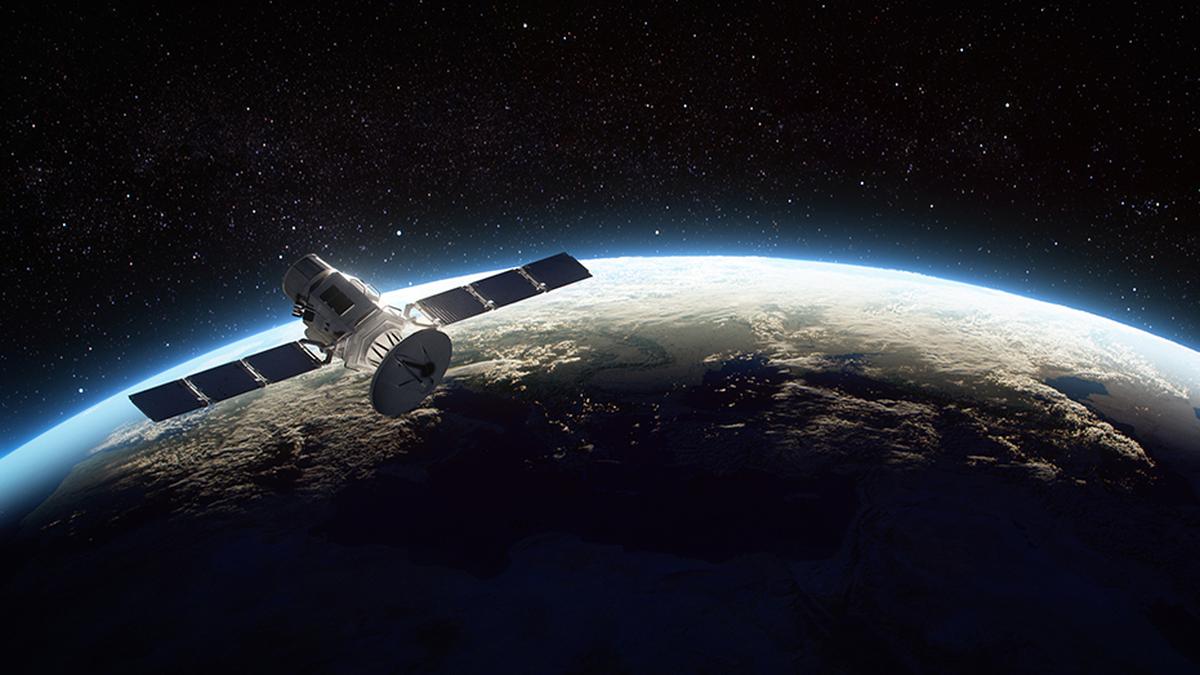
- 02 Jul 2025
In News:
Building on critical lessons from Operation Sindoor, where satellite surveillance played a pivotal role in precision military responses, the Union Government has decided to fast-track the launch of 52 dedicated surveillance satellites. The move is aimed at enhancing real-time, all-weather, and round-the-clock monitoring of India’s land and maritime borders, particularly with China and Pakistan.
The decision comes amid growing emphasis on space-based intelligence, surveillance, and reconnaissance (ISR) capabilities to counter modern threats, including drones and hypersonic weapons.
SBS-III Programme: Overview
The Space-Based Surveillance-III (SBS-III) programme was approved in October 2023 by the Cabinet Committee on Security (CCS) chaired by the Prime Minister. It is India’s most ambitious defence space project to date.
Key Features of SBS-III:
- Total Satellites: 52 dedicated military satellites
- ISRO: Will build and launch 21 satellites
- Private Sector: Will develop 31 satellites
- Launch Timeline:
- First launch by April 2026
- Full constellation targeted by end of 2029
- Project Cost: ?26,968 crore (approx. $3.2 billion)
- Supervising Agency:Defence Space Agency (DSA) under the Integrated Defence Staff (IDS), Ministry of Defence
Strategic Objectives and Capabilities
- Surveillance Reach and Coverage
- Wider coverage of China, Pakistan, and Indian Ocean Region (IOR)
- Reduced revisit times: Faster and more frequent imaging of sensitive areas
- Capability to monitor airfields, military bases, and staging grounds deep inside adversary territory
- Operational Orbits
- Satellites to operate in both Low Earth Orbit (LEO) and Geostationary Orbit (GEO) for layered coverage
- Designed to counter China’s anti-satellite (ASAT) capabilities including kinetic and electronic warfare systems
Technology and Innovations
- Artificial Intelligence (AI) Integration
- Satellites will use AI-powered decision-making to enhance image processing, target detection, and threat identification
- Ability to interact with each other and form a Geo-Intelligence (GeoInt) network for real-time intelligence sharing
- Small Satellite Launch Vehicles (SSLV)
- ISRO to transfer SSLV technology to private players
- Enables rapid satellite deployment during emergencies, ensuring strategic agility and resilience
Lessons from Operation Sindoor
During Operation Sindoor, Indian defence forces used satellite-based surveillance to track drone and missile trajectories, providing precise actionable intelligence. This success underscored the need for:
- High-resolution radar imaging
- Day-night and all-weather capabilities
- Faster intelligence turnaround time
These operational insights directly influenced the SBS-III mission design and its urgency.
Defence Space Agency (DSA)
- Established in 2019, replacing the Integrated Space Cell
- Operates under the Ministry of Defence’s Integrated Defence Staff (IDS)
- Coordinates with ISRO, DRDO, and Armed Forces on:
- Space warfare strategy
- Protection of Indian space assets
- Integration of ISR data with battlefield operations
Eight Years of GST
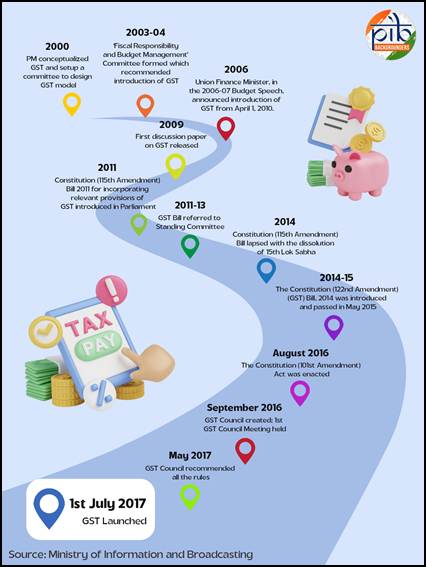
- 02 Jul 2025
In News:
The Goods and Services Tax (GST) was implemented on 1st July 2017, aiming to unify India’s fragmented indirect tax system into a single, nation-wide tax. It replaced multiple central and state levies such as excise duty, service tax, VAT, and others.
By simplifying the tax structure and improving transparency, GST aimed to enhance compliance, remove tax cascading, and create a common national market. As of 1st July 2025, GST has completed eight years.
Key Highlights of 2024–25
- In the financial year 2024–25, GST collections reached an all-time high of ?22.08 lakh crore, representing a growth of 9.4% over the previous year. The average monthly collection was ?1.84 lakh crore. The number of active GST taxpayers crossed 1.51 crore.
- According to the Deloitte GST@8 survey, 85% of respondents across industries reported a positive experience with GST, highlighting improvements in compliance, transparency, and ease of doing business.
Structure of the GST System
Components of GST
GST operates under a dual model:
- Central GST (CGST) and State GST (SGST) for intra-state transactions.
- Integrated GST (IGST) for inter-state transactions and imports.
Rate Structure
The GST Council has approved a multi-tier rate structure:
- Standard slabs of 5%, 12%, 18%, and 28% apply to most goods and services.
- Special lower rates include 0.25% on rough diamonds, 1.5% on cut and polished diamonds, and 3% on gold, silver, and jewellery.
- A Compensation Cess is levied on select goods such as tobacco, aerated drinks, and luxury cars to compensate states for revenue loss during the transition.
Key Features of GST
- Destination-Based Tax: GST is levied at the place of consumption, rather than origin. This ensures equitable revenue distribution and smooth credit flow across the supply chain.
- Input Tax Credit (ITC): Businesses can claim credit for taxes paid on inputs. This eliminates the cascading effect of taxes and reduces overall costs.
- Threshold Exemption: Small businesses with turnover below ?40 lakh for goods and ?20 lakh for services are exempt from GST, reducing the compliance burden on micro-enterprises.
- Composition Scheme: Businesses with turnover up to ?1.5 crore (goods) and ?50 lakh (services) can opt for a simplified tax scheme with fixed rates and minimal paperwork.
- Digital Compliance: All processes—from registration to return filing and payments—are conducted online through the GSTN portal. This digital-first approach enhances transparency and efficiency.
- Sector-Specific Exemptions: Essential sectors such as healthcare and education are either exempt or taxed at concessional rates to ensure affordability.
- Revenue Sharing: GST enables seamless credit transfers and transparent revenue sharing between the Centre and States, strengthening cooperative fiscal federalism.
Impact of GST
On MSMEs
- GST has provided major relief to micro, small, and medium enterprises by raising exemption thresholds and simplifying compliance. The introduction of the composition scheme allows them to pay tax at a flat rate with simplified filing.
- The Trade Receivables Discounting System (TReDS) has also expanded access to credit. As of May 2024, four digital platforms were operational, with over 5,000 buyers and 53 banks and 13 NBFCs registered as financiers.
- Other initiatives include quarterly return filing for businesses with turnover up to ?5 crore and SMS-based NIL return filing, reducing administrative hassle for small taxpayers.
On Consumers
- GST has benefited consumers by lowering tax rates on essential goods such as cereals, edible oils, sugar, and snacks. A study by the Finance Ministry found that GST led to an average household saving of 4% in monthly expenses.
- The expansion of the tax base from 60 lakh registered taxpayers in 2017 to over 1.51 crore in 2025 has enabled the government to rationalize rates further.
On the Logistics Sector
- The removal of inter-state check posts and the introduction of e-way bills have significantly improved logistics efficiency. Transport time has reduced by over 33%, and businesses no longer need to maintain warehouses in every state. This has facilitated the creation of centralized, tech-enabled supply chains.
Revenue Performance Over Time
Since its launch, GST collections have shown consistent growth. In 2020–21, collections stood at ?11.37 lakh crore. They rose to ?14.83 lakh crore in 2021–22, ?18.08 lakh crore in 2022–23, ?20.18 lakh crore in 2023–24, and finally to ?22.08 lakh crore in 2024–25. This reflects improved compliance, economic recovery, and digital enforcement.
GST Council and Its Role
Constitutional Basis: The GST Council was constituted under Article 279A of the Constitution following the passage of the 122nd Constitutional Amendment Act. The Council was formally set up after Presidential assent on 8th September 2016.
Composition: The Council includes:
- Union Finance Minister as Chairperson
- Union Minister of State (Finance/Revenue)
- State Finance Ministers
- Special representation in case of constitutional emergency (Article 356)
Major Decisions: Since its inception, the GST Council has met 55 times and taken several reform-oriented decisions:
- Introduced e-way bills, e-invoicing, and the QRMP scheme
- Reduced GST on under-construction affordable housing from 8% to 1%
- Lowered GST on electric vehicles from 12% to 5%, and exempted large EV buses
- Streamlined compliance through auto-populated returns and QR codes
- Rationalized GST slabs, reducing items in the 28% slab from 227 to 35
- Set up GST Appellate Tribunals with Principal Bench in New Delhi
- Rolled out Aadhaar-based biometric authentication and clarified rules for vouchers
- Recommended full GST exemption on gene therapy and a legal framework for Invoice Management System
Skills for the Future
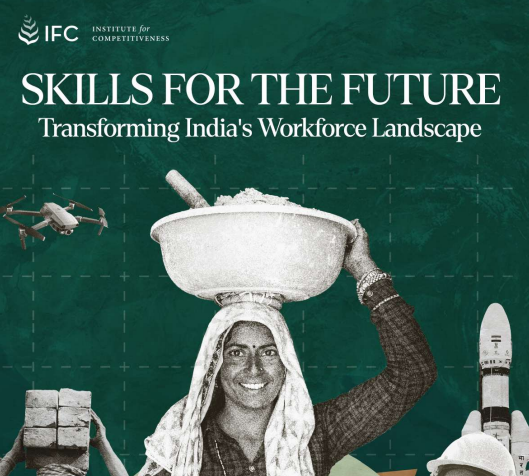
- 01 Jul 2025
In News:
Recently, theUnion Minister Jayant Chaudhary (MoS, Independent Charge – Ministry of Skill Development and Entrepreneurship, and MoS – Ministry of Education) unveiled the report "Skills for the Future: Transforming India’s Workforce Landscape", prepared by the Institute for Competitiveness (IFC). This data-driven report critically analyses India’s skilling ecosystem using PLFS 2023–24 and other datasets.
Significance of Skilling for India’s Development
- Demographic Dividend: India has one of the world’s youngest populations. Skilling is crucial to leverage this before population ageing sets in (by 2047).
- Economic Growth: A 1% rise in Gross Enrolment Ratio (GER) at the tertiary level increases GDP by 0.511% (Parika, 2020).
- Employment Creation: India needs to create 5 lakh non-farm jobs annually till 2030 (Economic Survey 2023–24).
- Global Competitiveness: Leadership in EVs, AI, biotechnology, and green energy demands a future-ready workforce.
Key Findings from the Report (PLFS 2023–24 Based)
1. Skill Distribution
- 88% of India’s workforce is in low-competency jobs (Skill Levels 1 & 2).
- Only 10–12% are employed in high-skill roles (Skill Levels 3 & 4).
- Only 4.5% of the workforce has received formal vocational training.
2. Education-Skill Mismatch
- Only 8.25% of graduates are in roles matching their skill level.
- Over 50% of graduates are employed in lower-skill jobs.
- Severe case of overqualification and underutilization of educational capital.
3. TVET and Sectoral Gaps
- Top 5 Sectors (66% of vocational enrolment):
- Electronics
- IT & ITeS
- Textiles & Apparel
- Healthcare & Life Sciences
- Beauty & Wellness
- Skill Deficits are critical in high-growth sectors like green tech, AI, biotech, and EVs.
4. Wage Inequality by Skill Level
Skill Level Avg. Annual Wage
Level 1 Rs.98,835
Level 2 Rs.1.26 lakh
Level 3 Rs.2.81 lakh
Level 4 Rs.3.94 lakh
46% of the workforce earns less than ?1 lakh/year, highlighting a major economic disparity.
5. Regional Disparities
- Low-Skilled States: Bihar, Assam (95% in Skill Levels 1 & 2)
- Higher-Skill States: Kerala, Chandigarh
- Migration and brain drain observed in low-skill, low-growth regions
Challenges Identified
- Skill-Education Mismatch: Graduates in low-skill jobs; vocational roles filled by underqualified informal workers.
- Weak TVET-Industry Linkage: Existing courses not aligned with Industry 4.0 or green economy needs.
- Low GER and Transition Dropout: Higher secondary GER at 57.56%, tertiary GER still below 30%.
- Gender & Social Exclusion: Low skilling access for women, SC/STs, rural youth.
- Data & Outcome Gaps: No central skill repository or real-time job-skill tracking.
Recommendations from the Report
- Institutional Reforms
- Launch a National Skill Gap Survey
- Establish a Central Skill Data Repository for real-time, evidence-based policymaking
- Curriculum & TVET Overhaul
- Update NCO codes (National Classification of Occupations)
- Integrate vocational training in schools
- Scale up PMKVY, NAPS, and credit-linked certifications
- Industry & Market Linkages
- Incentivise hiring of certified skilled labour
- Link industry wage structures to skill certifications
- Encourage industry-led training programs
- Targeted Inclusion & Regional Empowerment
- Empower State Skill Missions
- Prioritise high-potential regions and sectors
- Target women, SC/STs, informal sector workers
- Education Pipeline Strengthening
- Raise GER at higher secondary and tertiary levels
- Promote flexible, modular skilling programs for working populations and school dropouts
Digital Initiatives for Maritime Sector
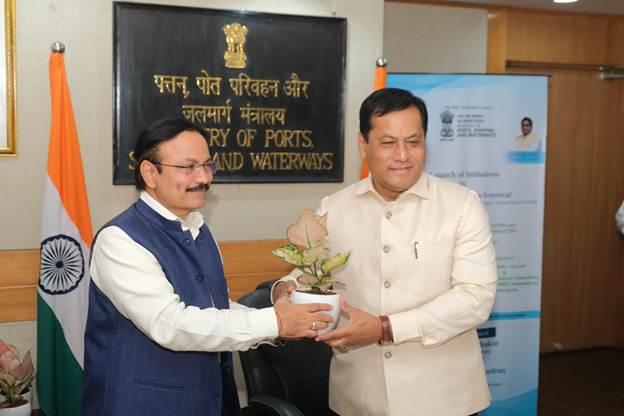
- 01 Jul 2025
In News:
Recently, the Union Minister for Ports, Shipping and Waterways, Shri Sarbananda Sonowal, launched a series of digital and sustainability-driven initiatives aimed at modernising India’s maritime sector. These reforms are aligned with the Maritime India Vision 2030 and Amrit Kaal Vision 2047.
Major Digital and Policy Initiatives Launched
1. Digital Centre of Excellence (DCoE)
- MoU signed between: MoPSW and Centre for Development of Advanced Computing (CDAC)
- Objective: Accelerate digital transformation across Indian ports
- Key Features:
- Application of AI, IoT, Blockchain to optimize maritime logistics
- Drive real-time operational upgrades
- Support green and sustainable port operations
- Strategic Alignment: Supports Atmanirbhar Bharat, Viksit Bharat @2047
2. SAGAR SETU Platform
- Type: Unified digital interface for maritime trade and EXIM operations
- Go-Live Date: 26th June 2025
- Integration: Connects 80+ ports and 40+ stakeholders
- Objective:
- Streamline cargo and vessel documentation
- Enable paperless, seamless, and transparent logistics
- Improve Ease of Doing Business (EoDB)
- Linked with: PM Gati Shakti National Master Plan
3. DRISHTI Framework
- Full Form: Data-driven Review Institutional System for Tracking Implementation
- Purpose: Real-time monitoring of projects under Maritime India Vision 2030
- Key Pillars:
- KPI Monitoring
- Progress & Achievements Tracking
- Organisational Oversight
- Functional Cell Coordination
- Strategic Value: Informed decision-making, faster project delivery
4. Standardised Scale of Rates (SOR) Template for Major Ports
- Objective: Standardise port tariffs to remove inconsistencies and improve transparency
- Features:
- Uniform structure for port tariffs
- Digitally comparable rates across ports
- Ports retain flexibility for local economic conditions
- Expected Impact:
- Enhances investor confidence
- Improves user experience
- Aligns with global maritime practices
Sustainability & Clean Energy: Hydrogen Transition Roadmap
Gateway to Green Report
Title: Gateway to Green — Assessing Port Readiness for Green Hydrogen Transition in India
- Released by: Ministry of Ports in collaboration with the Indian Ports Association (IPA)
- Objective: Transform Indian ports into green hydrogen hubs by 2030
- Strategic Goals:
- Produce 5 million tonnes of Green Hydrogen by 2030
- Develop infrastructure for production, storage, and export
- Leverage India’s maritime geography for clean energy leadership
- Targeted Ports for Hydrogen Transition:
- V.O. Chidambaranar Port
- Paradip Port
- Deendayal Port
- Jawaharlal Nehru Port
- Mumbai Port
- Cochin Port
- Key Action Areas:
- Land allocation for hydrogen projects
- Demand stimulation and investor facilitation
- International collaborations for knowledge and finance
- Shared infrastructure models
Strategic Relevance for India
- Economic Impact:
- Enhances trade competitiveness and reduces logistics cost
- Modernises infrastructure to global benchmarks
- Boosts Make in India and port-led development
- Digital Governance:
- Promotes data-driven decision-making
- Enables real-time monitoring and performance tracking
- Environmental Sustainability:
- Aligns with India’s National Hydrogen Mission
- Ports act as catalysts for clean energy transition
International Potato Research Center
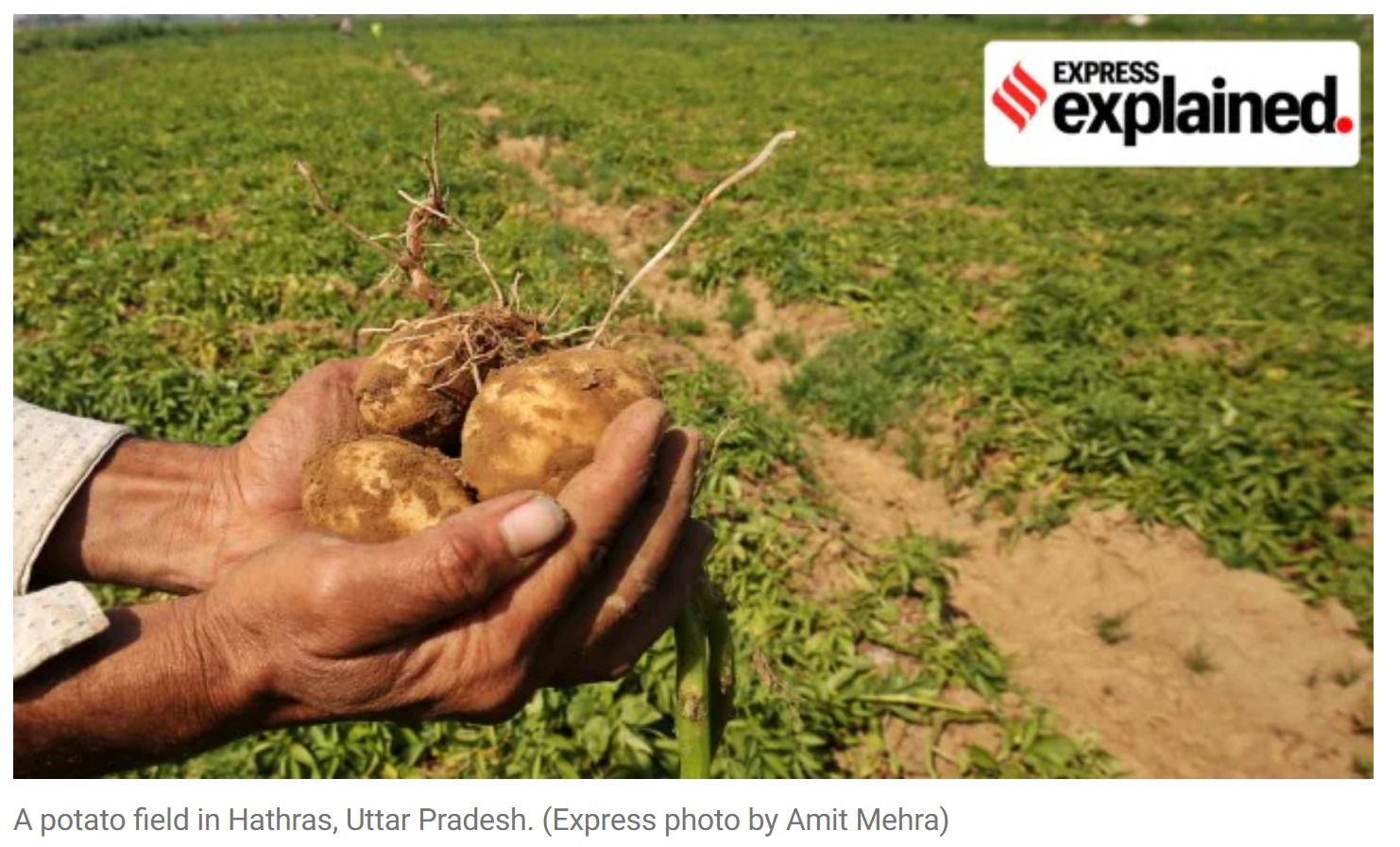
- 01 Jul 2025
In News:
- On June 25, 2025, the Union Cabinet approved the establishment of the CIP-South Asia Regional Center (CSARC) in Agra, Uttar Pradesh.
- The center will function as a regional wing of the International Potato Center (CIP) headquartered in Lima, Peru.
About CIP
- Founded: 1971
- Headquarters: Lima, Peru
- Focus Crops: Potato, Sweet Potato, and Andean roots & tubers
- Global Presence: South America, Africa, Asia
- India Operations: Since 1975, through partnership with ICAR
About CIP-South Asia Regional Center (CSARC)
- Location: Singna, Agra district, Uttar Pradesh
- Land Provided: 10 hectares (by UP Government)
- Total Project Cost: ?171 crore
- Indian Contribution: ?111.5 crore
- CIP Contribution: ?60 crore
- Implementing Ministry: Ministry of Agriculture & Farmers’ Welfare
Objectives of the Center
- Improve productivity of potato and sweet potato
- Promote climate-resilient, disease-free varieties
- Enhance post-harvest management and value addition
- Boost domestic seed production
- Support exports and food processing industries
- Increase farmer income, employment, and nutritional security
Why is this Significant?
- Potato is the 3rd most consumed crop globally (after rice and wheat)
- Sweet potato ranks 6th globally (after maize and cassava)
- India is the 2nd largest producer and consumer of potato
- Current average yield in India:
- Potato: ~25 tonnes/ha (Potential: >50 tonnes/ha)
- Sweet Potato: ~11.5 tonnes/ha (Potential: ~30 tonnes/ha)
- Establishment of CSARC will:
- Reduce dependency on seed imports
- Improve access to global germplasm
- Help bridge the yield gap
Global and National Context
- China is the largest potato producer (78.24 million tonnes, 2020)
- India is second (51.3 million tonnes, 2020)
- Top Potato-Producing States in India (2020–21):
- Uttar Pradesh (~15 million tonnes)
- West Bengal (~15 million tonnes)
- Bihar (~9 million tonnes)
Related Agricultural Research Institutions in India
- ICAR-CPRI, Shimla – Potato research
- ICAR-CTCRI, Thiruvananthapuram – Sweet potato and tuber crops
- IRRI-SARC, Varanasi – Regional center of International Rice Research Institute
CIP Centers Outside Peru
- China Center for Asia-Pacific (CCCAP) – Established in 2017 in Beijing, China
- India's CSARC (Agra) will be the second major CIP center outside Peru
Operation Bihali

- 01 Jul 2025
In News:
A Jaish-e-Mohammad (JeM) terrorist was neutralized and three others were cornered in Operation Bihali, a high-risk counter-terror operation conducted in the Basantgarh area of Udhampur district, Jammu & Kashmir.
About Operation Bihali
Aspect Details
Type of Operation Counter-terrorism
Objective Neutralize a group of 4 JeM terrorists and prevent cross-border attacks
Location Basantgarh region, Udhampur district, J&K
Launched by Jointly by Indian Army Para Commandos and J&K Police
Operational Command Under the White Knight Corps
Intelligence Basis Based on 12 months of surveillance identifying the terrorist group
Key Significance
- Neutralization of JeM Threat: Thwarted potential attacks and ensured regional stability.
- Intelligence-Led Operation: Reflects enhanced surveillance and coordination between civil and military forces.
- Strategic Impact:
- Disrupted terror infiltration routes along sensitive zones.
- Reinforced India's proactive counter-insurgency posture in Jammu & Kashmir.
- Strengthened local security infrastructure in vulnerable border districts.
19th National Statistics Day
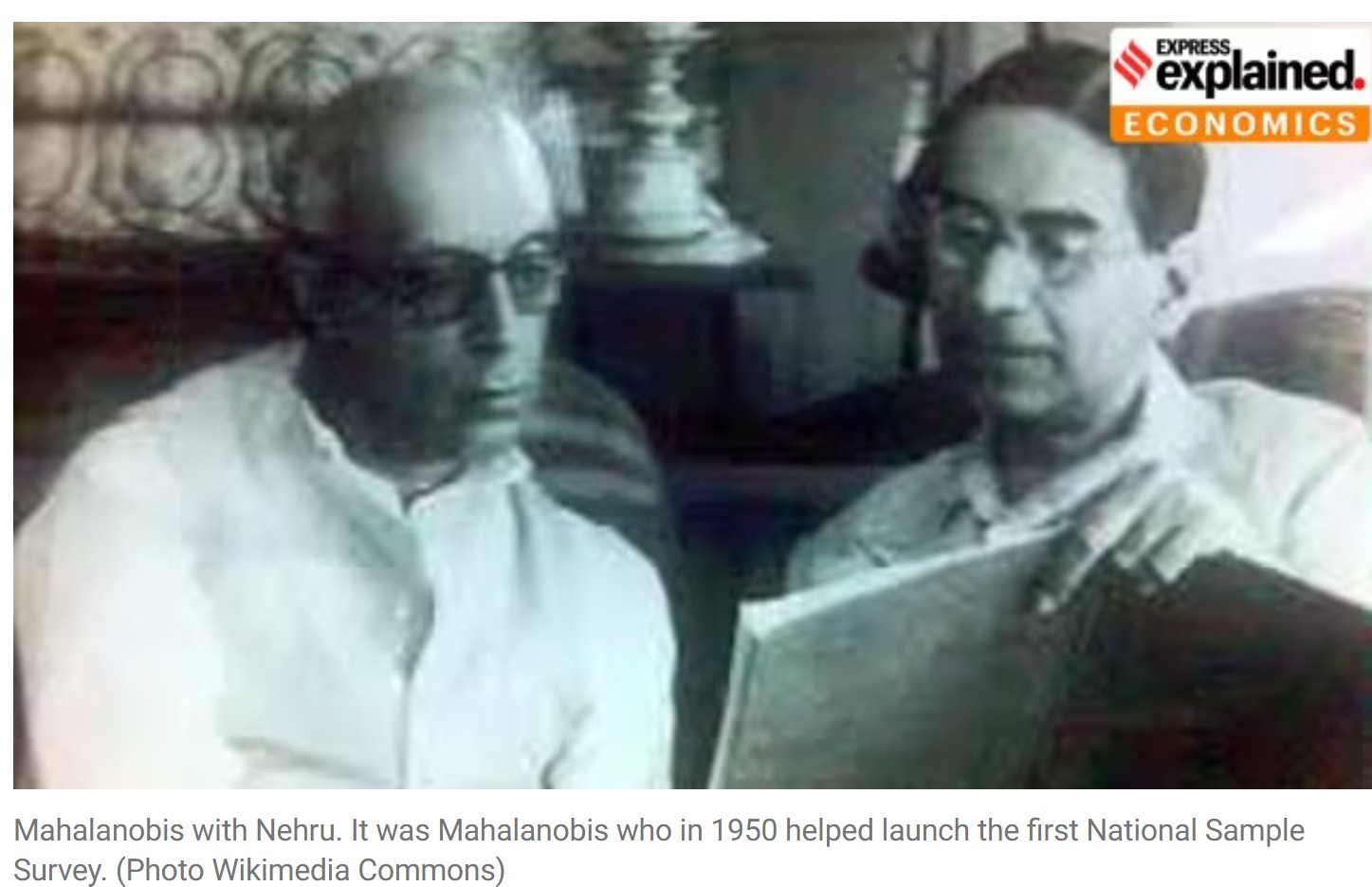
- 01 Jul 2025
In News:
MoSPI celebrates 19th Statistics Day honouring Prof. P.C. Mahalanobis and 75 years of National Sample Survey.
Key Highlights:
June 29 is observed as National Statistics Day in India to commemorate the birth anniversary of Prof. Prasanta Chandra Mahalanobis (1893–1972), widely regarded as the Father of Indian Statistics. The 2025 theme is "75 Years of National Sample Survey (NSS)".
The day is dedicated to promoting the role of statistics in nation-building and policy formulation, especially among the youth.
Key Contributions of P.C. Mahalanobis
1. Architect of India’s National Sample Survey (NSS)
- In 1950, Prof. Mahalanobis pioneered the National Sample Survey, India's first scientific and large-scale household data collection system.
- NSS is a large-scale, nationwide socio-economic data collection initiative conducted by the National Sample Survey Office (NSSO) under the Ministry of Statistics and Programme Implementation (MoSPI).
- Key Objectives of the NSS: Generate high-quality data to inform public policy, planning, and developmental programs.Conduct household surveys on:
- Consumption expenditure
- Employment & unemployment
- Health and education
- Migration and the informal sector
- Undertake the Annual Survey of Industries (ASI) to evaluate industrial performance.
- Support the agricultural sector by supervising crop area and yield estimation.
- Provide price statistics for rural and urban India to monitor inflation and cost-of-living changes.
- Key Features of the NSS
- All-India Scientific Coverage: Surveys conducted in both rural and urban areas using stratified multi-stage sampling methods.
- Organizational Structure – Four Major Divisions
Division Function
Survey Design & Research Division (SDRD) Survey planning, design, and methodology (HQ: Kolkata)
Field Operations Division (FOD) Data collection via 170+ regional offices (HQ: Delhi/Faridabad)
Data Processing Division (DPD) Data validation, tabulation, processing for surveys like PLFS & ASI
Survey Coordination Division (SCD) Coordinates survey activities and publishes Sarvekshana journal
- Multi-Thematic and Integrated Surveys
- Consumption patterns
- Employment trends (via Periodic Labour Force Survey - PLFS)
- Health and morbidity
- Education, migration, and social welfare indicators
- Support for Agriculture and Industry: Strengthens crop statistics and supports the ASI Web Portal for industrial data validation.
- Digital Integration & Real-Time Processing:Modernization efforts include urban sampling frame maintenance, tablet-based data collection, and real-time monitoring tools.
2. Mahalanobis Distance (1936)
- A multivariate statistical measure used to identify outliers and data anomalies.
- It quantifies the distance of a data point from a distribution, factoring in correlations between variables.
- Widely applied in fields such as public health, market research, and machine learning.
3. Flood Control and Environmental Planning
- In the 1920s, Mahalanobis used historical data to guide flood mitigation in Bengal and Odisha.
- His studies disproved incorrect assumptions (e.g., rising river beds) and recommended drainage improvements and dam construction.
- His early estimates contributed to the Hirakud Hydroelectric Project, inaugurated in 1957.
4. Institution Building: Founder of ISI & Sankhya Journal
- Founded the Indian Statistical Institute (ISI) in Kolkata in 1931, a premier research institute for statistics and mathematics.
- Launched ‘Sankhya’, India’s first statistical journal, fostering academic and applied research.
5. Role in National Planning & Technology Advocacy
- Chief architect of the Second Five-Year Plan, which introduced the Mahalanobis Model — emphasizing heavy industries and public sector-led growth.
- Advocated for digital computing in India. However, during the Cold War, the U.S. denied India access to the UNIVAC computer, fearing Mahalanobis’s pro-Soviet leanings.
Biographical Snapshot
Attribute Details
Born 29 June 1893, Kolkata (then Calcutta)
Education Presidency College; King's College, Cambridge
Field Statistics, Economic Planning, Data Science
Key Institutions Indian Statistical Institute (ISI), NSS, Planning Commission
Died 28 June 1972
Axiom Mission 4 (Ax-4)
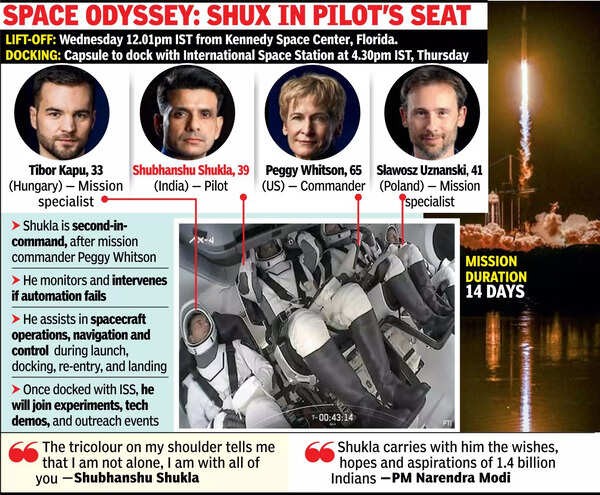
- 30 Jun 2025
In News:
India marked a historic moment in space exploration as Group Captain Shubhanshu Shukla became the first Indian to reach the International Space Station (ISS), 41 years after Rakesh Sharma’s 1984 mission.
Organizations Involved:
- Axiom Space – Mission organizer
- NASA – ISS host and operations support
- SpaceX – Provided Falcon 9 launch vehicle and Dragon capsule
Launch Details:
- Launch Date: June 25, 2025
- Launch Site: Launch Complex 39A, Kennedy Space Center, Florida
- Mission Duration: ~14 days aboard the ISS
Mission Objectives:
1. Scientific Research in Microgravity:
- Over 60 research experiments conducted across:
- Life sciences
- Material sciences
- Human physiology
- Earth observation
2. International Space Cooperation:
- Promotes global collaboration in low-Earth orbit science.
- Supports capacity-building for emerging space nations, including India, Poland, and Hungary.
3. National Space Program Development:
- Enables participating nations to strengthen human spaceflight capabilities.
- Acts as a stepping stone for India’s Gaganyaan and future space station plans.
Significance for India:
- Revival of Human Spaceflight:
- Marks India’s return to human space missions after four decades.
- Reinforces India's presence in international human space exploration.
- Boost to Gaganyaan Mission:
- Offers valuable operational experience and technical collaboration.
- Supports India’s vision to launch Gaganyaan, its first indigenous human spaceflight mission.
- Long-Term Space Ambitions:
- Aids India’s goal to establish its own space station by 2035.
- Positions India as a partner in space science diplomacy and global research.
- Scientific Prestige:India contributes to key microgravity experiments, enhancing its global research footprint in space.
Banakacherla Reservoir Project Dispute
- 30 Jun 2025
In News:
A fresh inter-state water dispute has surfaced between Telangana and Andhra Pradesh, with Telangana accusing Andhra Pradesh of violating provisions of the Andhra Pradesh Reorganisation Act, 2014 through its proposed Banakacherla Reservoir Project.
About the Banakacherla Reservoir Project
- Location: Banakacherla, Nandyal district, Andhra Pradesh
- Implementing State: Andhra Pradesh
- Objecting State: Telangana
- Purpose: To divert surplus Godavari river water to the drought-prone Rayalaseema region via the Krishna river system.
Key Features of the Project:
River Diversion and Infrastructure Upgrades:
- Polavaram Right Main Canal capacity to be increased from 17,500 to 38,000 cusecs.
- Thatipudi Lift Canal capacity to be enhanced from 1,400 to 10,000 cusecs.
- New reservoir at Bollapalli, with a tunnel through the Nallamala forest to transfer water to Banakacherla.
Lift Irrigation Points:
Five major lift stations planned:
- Harischandrapuram
- Lingapuram
- Vyyandana
- Gangireddypalem
- Nakirekallu
Inter-Basin Linkage:
- Connects Godavari → Krishna → Penna rivers.
- Aims to ensure water availability in Rayalaseema and address regional droughts.
Telangana’s Objections
1. Violation of the AP Reorganisation Act, 2014:Telangana alleges the project bypasses the statutory requirement of prior approval for new inter-basin water projects between the successor states.
2. Absence of Statutory Clearances:
- The project has not been cleared by:
- Krishna River Management Board (KRMB)
- Godavari River Management Board (GRMB)
- Central Water Commission (CWC)
3. Godavari Tribunal Allocation Overlooked:
- Telangana cites the Godavari Water Disputes Tribunal award which allocated 968 TMCft to the state out of 1,486 TMCft.
- Telangana argues that “surplus water” claims lack formal quantification or agreement.
4. Potential Impact on Telangana Projects:Telangana fears that Andhra’s diversion plan will affect its own irrigation schemes and reservoirs dependent on Godavari inflows.
Broader Implications
- This dispute underscores the growing tensions over inter-basin water transfers in India, especially in the context of climate variability and regional water stress.
- It highlights the need for:
- Transparent interstate coordination
- Functioning river boards
- Expedited dispute resolution mechanisms
RBI Eases Priority Sector Lending (PSL) Norms for Small Finance Banks (SFBs)
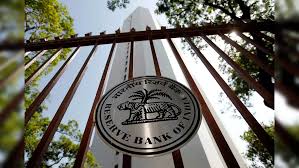
- 30 Jun 2025
In News:
In a major policy shift aimed at enhancing financial flexibility, the Reserve Bank of India (RBI) has reduced the Priority Sector Lending (PSL) target for Small Finance Banks (SFBs) from 75% to 60% of their Adjusted Net Bank Credit (ANBC).
What Has Changed?
Previous Norms:
- SFBs were required to allocate 75% of ANBC towards PSL.
- An additional 35% PSL requirement applied beyond the standard 40% applicable to universal banks.
- These strict targets led to:
- Difficulty in sourcing quality borrowers.
- Compressed profit margins.
- Limited portfolio diversification.
Revised Norms (2024):
- Overall PSL target reduced to 60% of ANBC.
- Additional PSL requirement brought down from 35% to 20%.
- Sub-sector allocation remains: SFBs must continue to dedicate 40% of ANBC to core PSL sectors such as agriculture, MSMEs, and weaker sections.
Objective of the Reform
- Enhance lending flexibility for SFBs.
- Improve asset quality and profitability by allowing portfolio diversification.
- Align SFB regulations more closely with those of other banks, without compromising on financial inclusion goals.
About Small Finance Banks (SFBs)
Origin and Mandate:
- Conceptualised by the NachiketMor Committee (2013).
- Regulated under the Banking Regulation Act, 1949.
- Created to expand financial inclusion by targeting:
- Small and marginal farmers,
- Micro and small enterprises (MSMEs),
- Unbanked and underserved populations.
Key Features:
- Offer basic banking services, including all deposit and small-ticket loan products.
- Operate on a localised model with strong rural and semi-urban outreach.
- Permitted to distribute non-risk sharing financial products like mutual funds and insurance.
Regulatory Requirements:
- At least 25% of branches in rural areas.
- Minimum 50% of loan portfolio must serve the MSME sector.
- Minimum net worth: ?100 crore at inception, to be raised to ?200 crore within 5 years.
- Maintain a Capital Adequacy Ratio (CAR) of 15% on risk-weighted assets.
Significance of the Move
- Offers SFBs greater operational autonomy and room to grow sustainably.
- Aims to balance developmental goals with commercial viability.
- Expected to promote credit flow to priority sectors while ensuring sound financial health of these institutions.
UN80 Initiative
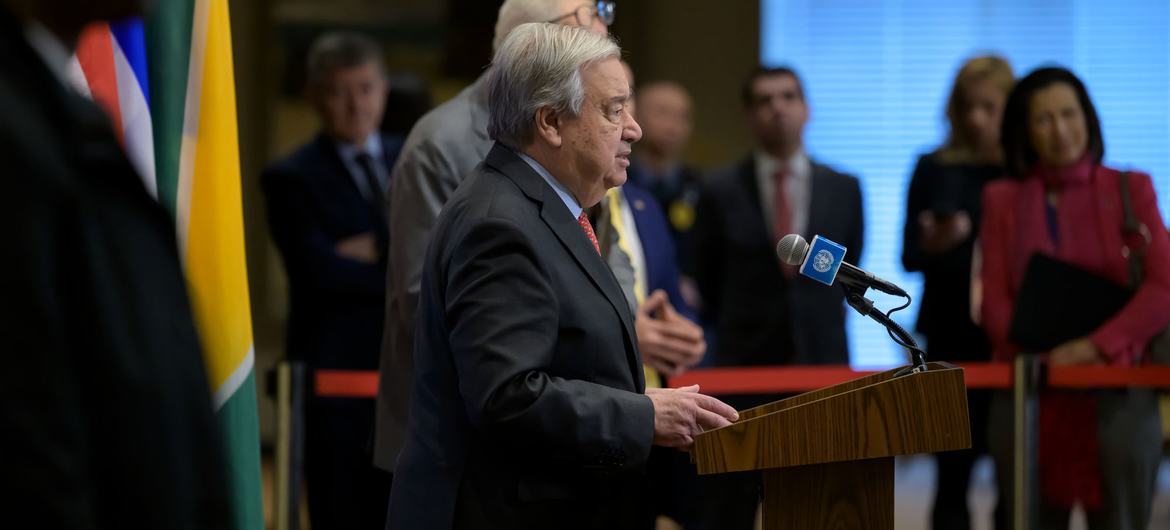
- 30 Jun 2025
In News:
In a significant move towards institutional transformation, UN Secretary-General António Guterres has launched the UN80 Initiative, aimed at overhauling the United Nations system in the run-up to the 80th anniversary of the UN Charter.
What is the UN80 Initiative?
The UN80 Initiative is a system-wide reform agenda designed to align the UN's structures, mandates, and operations with contemporary global challenges, including peacebuilding, sustainable development, and human rights.
Objectives:
- Modernize the UN architecture to improve responsiveness.
- Enhance accountability and reduce inefficiencies.
- Ensure effective delivery of core mandates in peace, development, and human rights.
Key Features of the UN80 Initiative:
1. Three Core Workstreams:
- Efficiency & Cost Reduction: Streamlining operations, eliminating overlaps, cutting administrative costs, and automating services.
- Mandate Implementation Review: Assessing the execution (not content) of over 3,600 UN mandates for effectiveness.
- Structural Reforms: Reorganizing departments and programs, especially in high-cost duty stations.
2. Formation of Thematic UN80 Clusters:
Seven thematic clusters focus on:
- Peace & Security
- Development (UN Secretariat and UN System)
- Humanitarian Affairs
- Human Rights
- Training & Research
- Specialized Agencies
3. Relocation and Rationalization:
- Proposes shifting operations from expensive cities like New York and Geneva.
- Seeks to abolish underperforming and redundant functions.
4. Budget Integration Timeline:
- Initial reforms to be reflected in the 2026 Revised Budget.
- Major structural reforms to be integrated into the 2027 Programme Budget.
Significance of the UN80 Initiative:
- Revitalizes Multilateralism: Supports the broader goals of the Pact for the Future and ensures the UN remains relevant.
- Boosts Operational Efficiency: Reduces waste, overlap, and underutilization of resources.
- Focuses on Results: Transitions from output-heavy reporting to impact-driven outcomes.
India’s Burden of Zero-Dose Children in 2023
- 30 Jun 2025
In News:
According to a recent Lancet study based on Global Burden of Disease data, India ranked second globally in terms of the number of unvaccinated or “zero-dose” children in 2023, trailing only Nigeria.
What Are Zero-Dose Children?
- The term “zero-dose children” refers to those who have not received even a single dose of any routine childhood vaccine.
- In 2023, 1.44 million children in India were identified as zero-dose, highlighting significant immunisation gaps.
Global and National Trends:
- Nigeria topped the list with approximately 2.5 million zero-dose children.
- Eight countries, including India and Nigeria, together accounted for over 50% of the global zero-dose burden.
- Globally, the number of zero-dose children dropped from 58.8 million in 1980 to 14.7 million in 2019, reflecting long-term progress.
Challenges in India:
- Despite the Universal ImmunisationProgramme (UIP) covering 12 vaccine-preventable diseases, several challenges persist:
- COVID-19 pandemic led to significant disruptions in routine immunisation.
- Vaccine hesitancy continues to undermine public health efforts.
- Geographical and socio-economic inequalities limit access to health services in certain regions.
- Between 2010 and 2019, measles vaccine coverage declined in over 100 countries, including India, further exacerbating public health risks.
Sree Narayana Guru
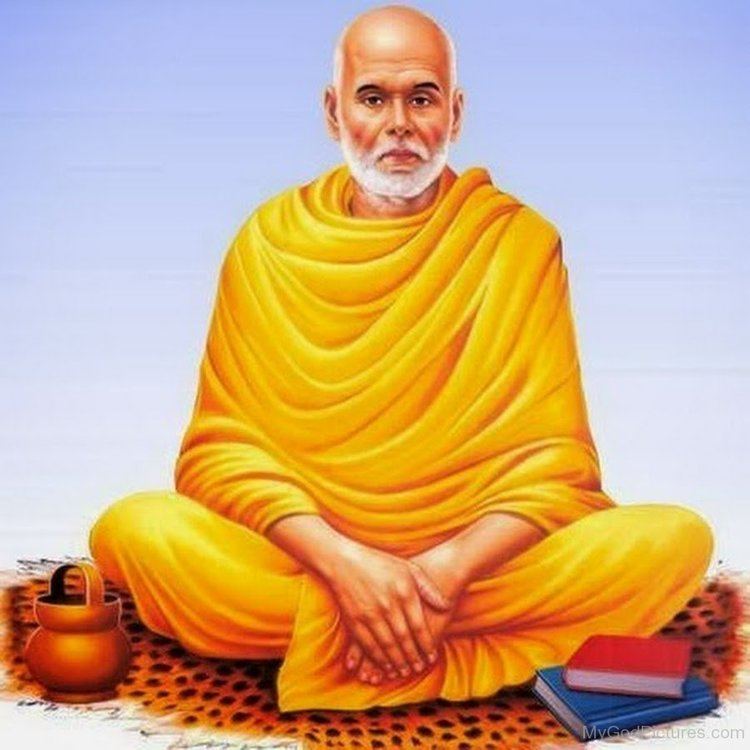
- 29 Jun 2025
In News:
The Prime Minister recently attended the centenary celebrations of the historic 1925 conversation between Mahatma Gandhi and Sree Narayana Guru, held at Vigyan Bhawan, New Delhi. The event marked the enduring relevance of Guru's message of social equality, spiritual unity, and reform.
Who was Sree Narayana Guru?
- Born: 20 August 1856, in a backward Ezhava community in Kerala
- Died: 20 September 1928
- Role: Spiritual leader, philosopher, poet, yogi, and one of India’s foremost social reformers from Kerala
Historical Context:
- During the 19th century, Kerala society was deeply caste-ridden, and the Ezhava community was subjected to systemic social exclusion.
- Guru revolted against caste oppression, advocating for spiritual liberation without ritual orthodoxy.
Core Philosophy:
- Message of Universal Unity:“OruJathi, OruMatham, OruDaivam, Manushyanu”
(One Caste, One Religion, One God for Mankind) — a powerful call for social harmony, inclusivity, and humanism. - Non-violent transformation:Unlike many radical reform movements, Guru’s approach was inclusive and reformative, rejecting social division without inciting confrontation.
Key Contributions:
- Religious and Spiritual Reforms:
- Aruvippuram Movement (1888):
- Consecrated a Shiva idol at Aruvippuram — a direct challenge to Brahmanical dominance and the exclusion of lower castes from temple worship.
- Established over 40 temples in Kerala, allowing unrestricted worship by the marginalized.
- Promoted yoga and meditation, and spent years in hermitage to attain spiritual depth.
- Aruvippuram Movement (1888):
- Social Reforms:
- Founded the Sivagiri Mutt (1904) near Varkala — a centre for spiritual and social awakening.
- SNDP Yogam (1903):
-
- Full form: Sri Narayana Guru Dharma ParipalanaYogam
- Aimed at securing education, government access, and political rights for the Ezhavas.
- Guru was the permanent chairman; Kumaran Asan, his disciple, became general secretary.
-
- Vaikom Satyagraha:Played a pivotal role in the anti-untouchability movement, alongside leaders like Mahatma Gandhi and Periyar.
- Promoted free education, ashrams, and vocational training for underprivileged children and communities.
- Sivagiri Foundation and Pilgrimage:
- Founded in 1924 to promote values like:Cleanliness, education, devotion, agriculture, handicrafts, and trade
- SivagiriTheerthadanam (pilgrimage):Initiated by his followers to reinforce values of purity, education, and organization
Literary Contributions:
- Guru was a Vedantic scholar and philosopher-poet. His notable works include:
- Advaitha Deepika
- Atmavilasam
- DaivaDasakam
- BrahmavidyaPanchakam
These texts reflected Advaita (non-dualist) philosophy, spiritual self-realization, and social ethics.
Legacy and Recognition:
- Revered as “Gurudevan”by his followers
- His birth and death anniversaries are observed as public holidays in Kerala and some other states
- Celebrated as Sri Narayana Jayanthi
Candida tropicalis
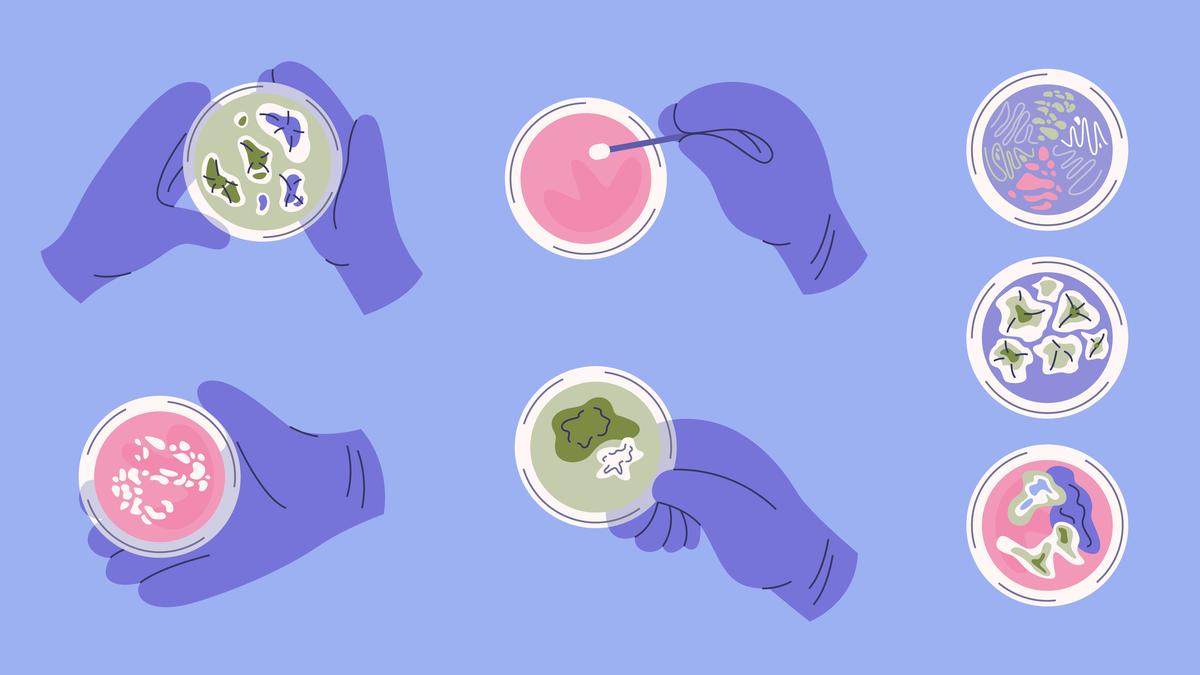
- 29 Jun 2025
In News:
A recent study published in PLoS Biology by researchers from Fudan University, China, has uncovered a disturbing link between the agricultural use of a common fungicide and the emergence of azole-resistant Candida tropicalis, a fungal pathogen responsible for high-mortality infections, especially in India and other tropical regions.
Candida tropicalis and Public Health Risk
- Candida tropicalis is a major fungal pathogen, particularly prevalent in India, associated with mortality rates of 55–60%.
- Azole-class antifungal drugs, such as fluconazole and voriconazole, are frontline treatments.
- Growing drug resistance is being reported in clinics globally, raising serious concerns for treatment efficacy and public health.
Fungicide Link to Drug Resistance
- Tebuconazole, a triazole-based fungicide, widely used in agriculture and gardening, has been found to be the primary driver of cross-resistance to clinical azoles in C. tropicalis.
- Tebuconazole accumulates and persists in the environment, exerting selective pressure on fungal strains.
- Clinical strains exposed to tebuconazole showed cross-resistance to both fluconazole and voriconazole.
Mechanism of Resistance: Ploidy Plasticity and Aneuploidy
- Resistant strains exhibit aneuploidy – a deviation in chromosome number, often with duplications or deletions of chromosome segments.
- This phenomenon, termed ploidy plasticity, is rare in most organisms due to its detrimental effects, but in C. tropicalis, it enables adaptive resistance.
Genetic Changes Observed:
- Duplication of TAC1 gene segment led to overexpression of ABC-transporters, proteins that pump out azoles and reduce their effectiveness.
- Deletion of HMG1 gene segment increased the synthesis of ergosterol, a compound crucial to fungal membranes, thus enhancing azole resistance.
- These adaptations allowed the resistant strains to trade growth rate for survival under antifungal pressure.
Emergence of Stable Haploid Strains
- The study unexpectedly identified haploid strains of C. tropicalis among resistant isolates.
- These haploids were found to be mating-competent, raising concerns over the genetic transfer of resistance traits.
- Further genomic analysis confirmed that naturally occurring haploid strains also exist, such as two clinical isolates from Spain.
Virulence and Resistance in Animal Models
- In mouse models, strains with altered ploidy exhibited greater virulence than their progenitor strains when treated with fluconazole.
- This finding suggests a dual threat: enhanced resistance and increased disease severity.
Implications and Concerns
- The unregulated and widespread use of triazole fungicides like tebuconazole in agriculture is unintentionally selecting for clinically significant drug resistance.
- These resistant fungal strains pose a direct threat to human health, particularly in immunocompromised patients and in settings with limited alternative antifungal therapies.
- Resistant strains can potentially spread and recombine through mating, complicating containment efforts.
State of the Climate in Asia 2024 Report
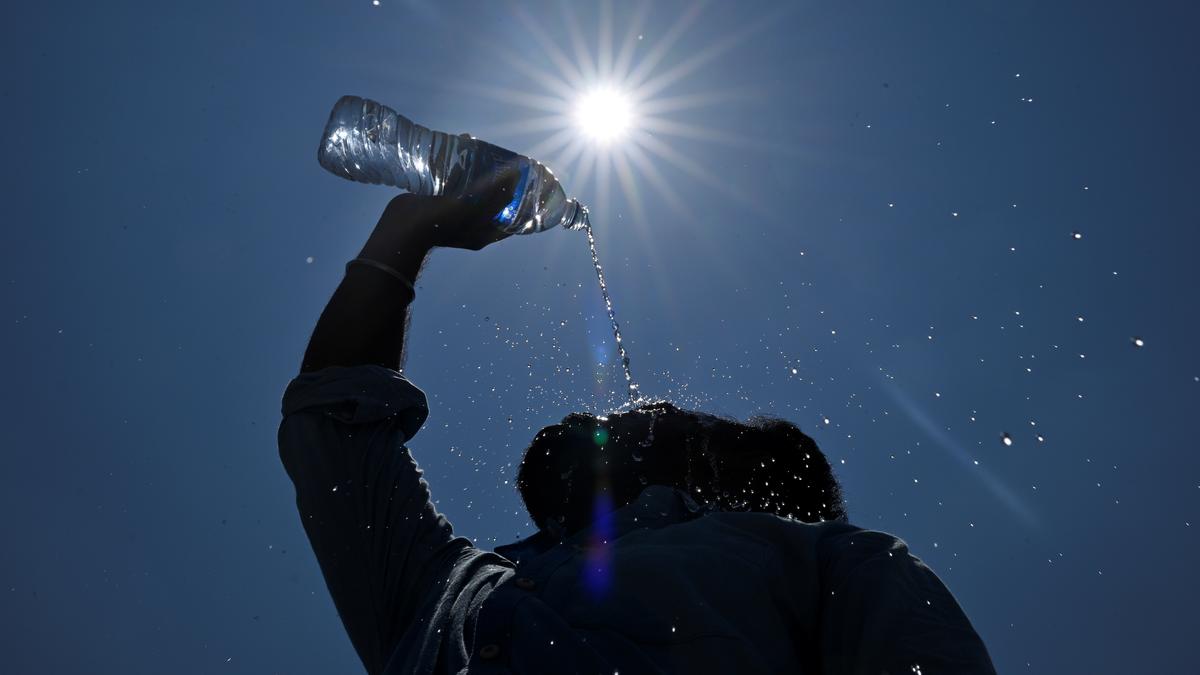
- 29 Jun 2025
In News:
The World Meteorological Organization (WMO) has released its annual State of the Climate in Asia 2024report, highlighting alarming trends in climate change impacts across the Asian continent. The report confirms that Asia is warming at nearly twice the global average, causing severe socio-economic and environmental consequences.
Key Climate Trends and Indicators in Asia (2024)
- Record Heat:The year 2024 was the warmest year in Asia’s history, marked by prolonged and widespread heatwaves across land and oceanic areas.
- Global Comparison:The global mean temperature in 2024 was the highest on record (1850–2024), surpassing the previous record of 1.45°C set in 2023. Each year between 2015 and 2024 ranks among the 10 warmest globally.
- Sea Surface Temperatures & Marine Heatwaves:Sea surface temperatures reached record highs,with Asian waters warming nearly twice as fast as the global average. Most Asian ocean areas experienced strong to extreme marine heatwaves, especially in the northern Indian Ocean, East China Sea, Yellow Sea, and waters near Japan.
- Sea Level Rise:Sea levels rose faster than the global average on both Pacific and Indian Ocean coasts of Asia, exacerbating risks for low-lying coastal areas.
Cryospheric Changes and Glacier Loss
- In Central Himalayas and Tian Shan ranges, 23 out of 24 monitored glaciers experienced mass loss in 2024.
- Consequences included increased risk of glacial lake outburst floods (GLOFs), landslides, and long-term threats to water security.
Scientific Warnings and Observations
The report highlights that the warming trend from 1991 to 2024 in Asia is nearly twice as fast as that between 1961 and 1990, underlining the acceleration of climate risks.
Implications for Asia
- Environmental:Rapid glacier melt, rising sea levels, and extreme weather are disrupting ecosystems, causing habitat loss and biodiversity decline.
- Economic:Agriculture, fisheries, and coastal infrastructure are suffering massive losses due to droughts, floods, and storms.
- Social:Heatwaves, displacements, and disaster-related fatalities are disproportionately affecting vulnerable populations, including the poor and elderly.
Digital Public Infrastructure for Fraud Risk Management
- 29 Jun 2025
In News:
The Reserve Bank of India (RBI) is set to develop a Digital Public Infrastructure for Fraud Risk Management (DPIP) under its supervision to curb rising instances of banking frauds in India. This aligns with broader efforts to enhance security and transparency in India’s financial ecosystem.
What is Digital Public Infrastructure (DPI)?
- Definition: DPI refers to foundational digital systems that are accessible, secure, interoperable, and designed to deliver essential public services.
- Examples in India:
- Aadhaar (Digital ID)
- Unified Payments Interface (UPI)
- DigiLocker, CoWIN, etc.
About DPIP
- Objective:To enhance fraud risk management through real-time intelligence sharing, data gathering, and interbank coordination using advanced technologies.
- Key Features:
- Will strengthen existing fraud detection systems in the banking ecosystem.
- Enables interoperable intelligence sharing between banks and financial institutions.
- Leverages AI/ML tools and data analytics for better predictive fraud detection.
- Institutional Mechanism:
- A committee under Shri A.P. Hota has been constituted to examine various aspects of DPIP’s implementation.
- RBI Innovation Hub (RBIH) is tasked with developing a prototype, in consultation with 5–10 public and private sector banks.
Need for DPIP
- Rise in Bank Frauds:
- As per RBI’s Annual Report:
- FY 2024: ?12,230 crore in frauds
- FY 2025: ?36,014 crore — almost 3x increase
- Increasing sophistication of cyber threats and fraud techniques necessitates robust preventive digital infrastructure.
- As per RBI’s Annual Report:
Other RBI Initiatives to Combat Bank Frauds
Initiative Description
Multi-Factor Authentication (MFA) Mandatory for all digital/electronic payments to ensure
secure transactions.
Zero Liability Framework Customers are not liable for losses arising from bank’s
negligence or third-party breaches.
bank.in and fin.in domains Reserved for verified bank websites to help customers
avoid phishing and fake sites.
Enhanced Rock Weathering (ERW)
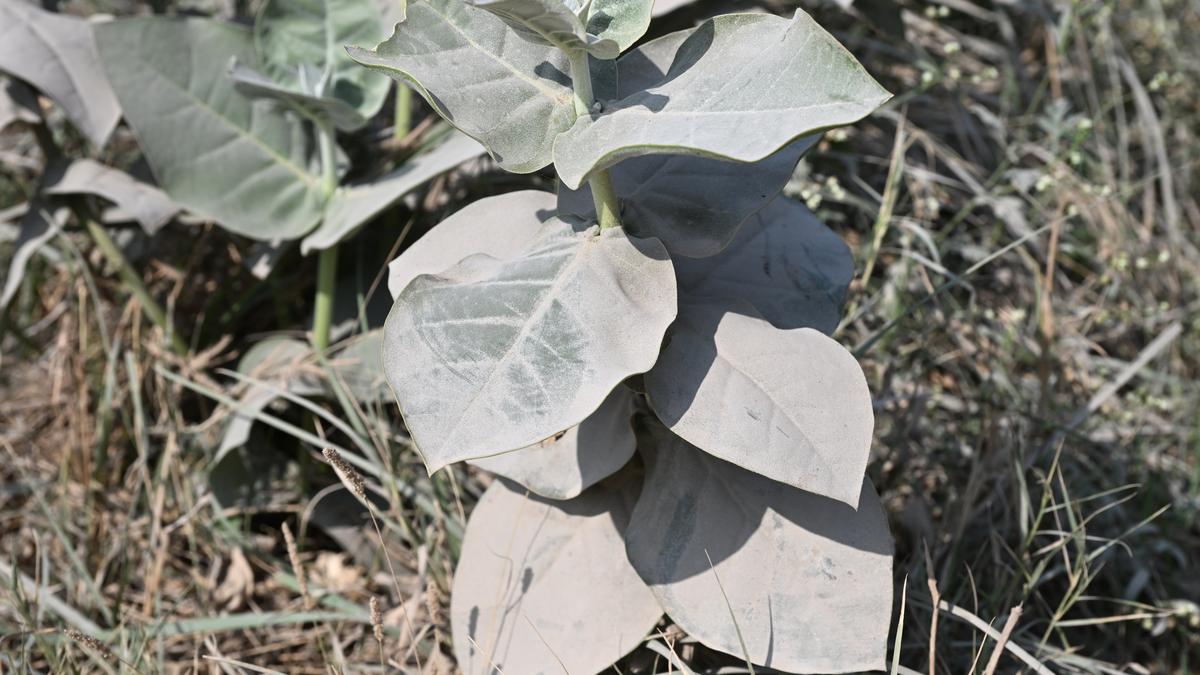
- 29 Jun 2025
In News:
Enhanced Rock Weathering (ERW) is emerging as a novel nature-based carbon removal strategy, gaining global traction from Brazil’s sugar plantations to tea estates in India. It is being explored as a scalable solution to climate change through natural carbon capture mechanisms.
What is Enhanced Rock Weathering (ERW)?
- Definition: ERW is a geoengineering technique that accelerates the natural chemical process of rock weathering to capture and store atmospheric carbon dioxide (CO?).
- Scientific Basis:
- Natural weathering involves the breakdown of silicate rocks through carbonic acid, formed when CO? dissolves in water, eventually locking the carbon in stable forms like bicarbonate or limestone.
- ERW accelerates this process using fast-weathering rocks like basalt, ground into fine particles to maximize surface area and reactivity.
Effectiveness and Challenges
- Potential Carbon Removal:
- A US-based study found that 50 tonnes of basalt/hectare/year could potentially remove up to 10.5 tonnes of CO?/hectare over four years.
- However, field trials in Malaysia (oil palm) and Australia (sugarcane) have shown lower than expected carbon capture rates.
- Key Variables Affecting Effectiveness:
- Rock type and mineralogy
- Soil characteristics
- Temperature and rainfall patterns
- Land management practices
- Measurement Difficulties:
- Current techniques often overestimate CO? capture due to detection of cations that form even in the absence of carbonic acid reactions.
- Risk: This can lead to inaccurate carbon credit claims, undermining offset integrity.
Co-Benefits of ERW
- Soil Health Improvement:
- Increases soil alkalinity → Improves nutrient availability and crop productivity.
- Contributes to soil formation and resilience.
- Resource Efficiency:Basalt is abundant and often a quarrying by-product, lowering costs and emissions associated with mining.
- Ocean Acidification Mitigation:Even if CO? isn't sequestered directly, rock in the soil can neutralize acidic runoff, preventing CO? release from aquatic systems downstream.
Risks and Concerns
- Health & Safety:
- Finely crushed rock may contain toxic heavy metals (depending on composition).
- Protective equipment is necessary during application.
- Carbon Credit Integrity:Overestimated CO? removal may allow companies to offset emissions inaccurately, leading to net increase in atmospheric carbon.
Global Adoption and Projects
- Countries Involved:Brazil, India, USA, Europe, and Latin America are trialing or implementing ERW.
- India Focus:Trials underway in Darjeeling tea plantations and other agricultural regions through startups like Mati Carbon.
- Global Milestones:
- First verified ERW carbon removal credits issued from a Brazilian project.
- Google signed the largest ERW deal for 200,000 tonnes of CO? removal credits (to be delivered by early 2030s).
- Terradot, an ERW company, sold 90,000 tonnes of carbon credits for $27 million, backed by firms like H&M.
Investor Interest and Innovation Push
- Private Sector Engagement:ERW has attracted big tech, fast fashion, and aviation sectors seeking nature-based offset solutions.
- Prize Recognition:Mati Carbon won the $50 million X Prize for carbon removal, recognizing the potential scalability and innovation of ERW.
India’s Coffee Exports

- 28 Jun 2025
In News:
India has emerged as a significant player in the global coffee trade, with its exports witnessing a sharp rise of 125% in the past 11 years, increasing from $800 million in 2014–15 to $1.8 billion in 2023–24, and continuing the momentum with over 25% growth in FY2025–26. This export surge highlights India's expanding footprint in the global premium coffee market, driven by a blend of policy support, sustainable cultivation practices, and global demand for specialty coffee.
Key Drivers of Export Growth
The Coffee Board of India, under the Ministry of Commerce, has played a pivotal role in this transformation through:
- Digitalisation of export permits, RCMC, and certificates of origin.
- Export incentives like freight and transit assistance—?3/kg for value-added exports and ?2/kg for green coffee to distant markets (e.g., US, Canada, Japan, Nordic countries).
- Subsidy support of 40% (up to ?15 lakh) for processing units (roasting, grinding, packaging).
- Global market intelligence and regular industry engagement to remove bottlenecks.
- Promotion via GI tags and digital branding campaigns.
These efforts have enhanced India’s readiness to meet stringent import regulations (e.g., EU deforestation norms) while enabling access to new and emerging markets.
Production and Cultivation
India is the 7th largest producer of coffee globally, accounting for about 3.5% of world production and ranks 5th in global coffee exports with a 5% share. The country produces 3.5–4 lakh tonnes of coffee annually, with Karnataka (70%), Kerala, and Tamil Nadu being major contributors.
- Arabica varieties: Kents, S.795, Cauvery, Selection 9.
- Robusta: High-yielding selections suited to Indian climate.
Climatic Features:
- Grown under two-tier shade canopies with over 50 native tree species.
- Arabica thrives at 1000–1500m, Robusta at 500–1000m altitudes.
- Requires 1600–2500 mm rainfall and 15°C–25°C temperature.
India is unique as the only country that cultivates 100% shade-grown coffee, which promotes biodiversity, soil and water conservation, and ensures a sustainable income for 2 million people, including small and marginal farmers.
Specialty and GI-Tagged Coffee
India’s coffee is known for its mild acidity, full-bodied flavour, and fine aroma. Intercropping with spices like pepper, cardamom, and vanilla further enhances its appeal. The country also boasts five regional and two specialty coffees with Geographical Indication (GI) tags, strengthening brand value in global markets.
The historic legacy of Indian coffee dates back over 400 years to the planting of coffee beans by Baba Budan in Karnataka, making it one of the oldest coffee traditions in Asia.
The Emergency in India (1975–1977)
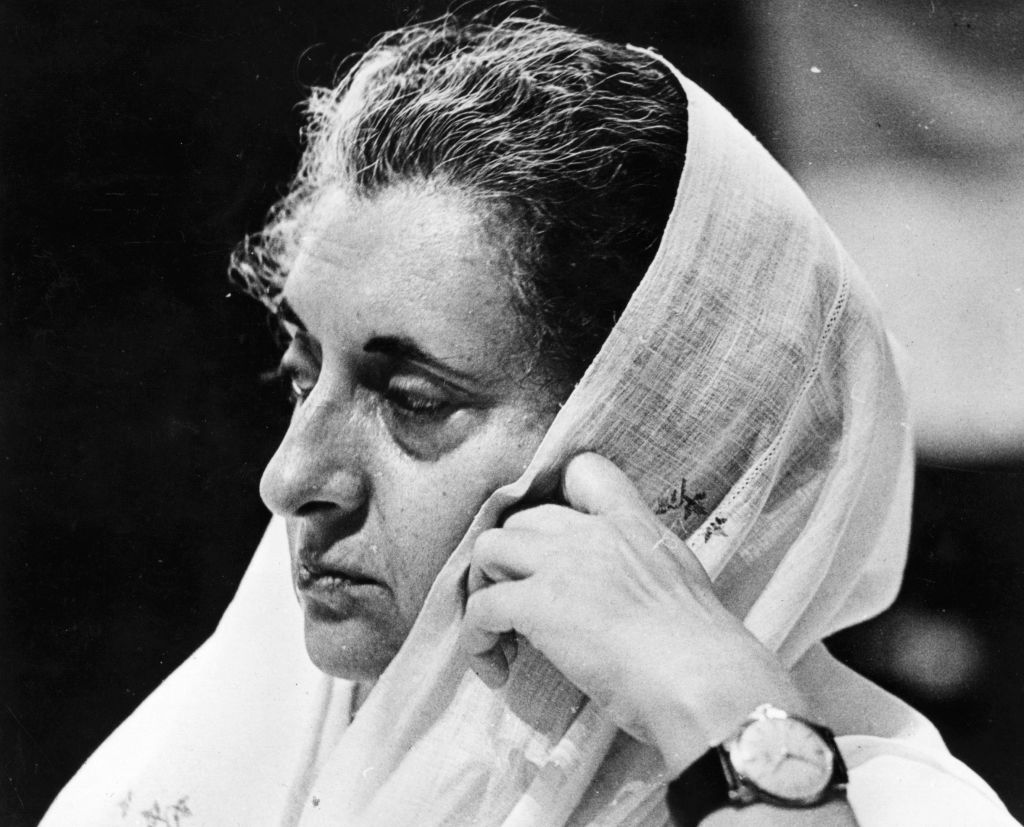
- 28 Jun 2025
In News:
The declaration of Emergency in India from 25 June 1975 to 21 March 1977 marks one of the most debated and transformative chapters in the country’s post-independence history. Proclaimed under Article 352 of the Constitution citing “internal disturbance”, this period had far-reaching legal, political, and social consequences. It served as a stress test for India’s democratic institutions and led to significant constitutional reforms.
Background:
- The early 1970s were marked by growing political discontent. Nationwide protests, especially in Bihar and Gujarat, were spearheaded by Jayaprakash Narayan against issues such as rising unemployment, inflation, corruption, and misuse of political power.
- The immediate provocation came from the Allahabad High Court’s judgment on 12 June 1975, which found Prime Minister Indira Gandhi guilty of electoral malpractice in her 1971 Lok Sabha campaign. The Court disqualified her from contesting elections for six years under the Representation of the People Act, 1951.
- Though the Supreme Court granted a conditional stay, political pressure intensified, with mass movements demanding her resignation.
Proclamation of Emergency
On 25 June 1975, President Fakhruddin Ali Ahmed, on the advice of the Prime Minister, declared a national Emergency under Article 352, citing internal disturbance. This was the third Emergency in India — the first two being during external wars (1962 with China and 1971 with Pakistan). However, this was the first peacetime Emergency.
Constitutional Basis
At that time, Article 352 allowed Emergency on three grounds:
- War
- External Aggression
- Internal Disturbance (later amended to “armed rebellion” by the 44th Amendment, 1978)
Suspension of Fundamental Rights
Two days later, on 27 June 1975, the government invoked:
- Article 358: Automatically suspended the freedoms under Article 19 (freedom of speech, assembly, movement, etc.)
- Article 359: Allowed suspension of Articles 14, 21, and 22, stripping protections related to equality before law, life and personal liberty, and protection against preventive detention.
Citizens lost access to courts for constitutional remedies. Prominent opposition leaders, including Jayaprakash Narayan, Morarji Desai, Atal Bihari Vajpayee, and L.K. Advani, were arrested under the Maintenance of Internal Security Act (MISA). According to the Shah Commission, around 35,000 individuals were detained without trial.
Censorship and Media Suppression
From 26 June 1975, press censorship was imposed. Newspapers were mandated to get clearance from government-appointed censors before publication. International news coverage was also tightly controlled, with telex messages of foreign correspondents placed under surveillance.
Key developments:
- On 20 July 1975, the Board of Film Censors was restructured to impose stricter control over cinema.
- On 1 February 1976, the four national news agencies — PTI, UNI, Samachar Bharati, and Hindustan Samachar — were merged into ‘Samachar’.
- The Press Council of India was dissolved.
Constitutional Amendments and Legislative Overreach
Several constitutional amendments were enacted to consolidate power:
- 38th Amendment (1975): Made the President’s Emergency declaration non-justiciable.
- 39th Amendment (1975): Excluded Prime Minister’s election from judicial review.
- 42nd Amendment (1976) (termed “Mini-Constitution”):
- Gave primacy to Directive Principles over Fundamental Rights
- Extended Lok Sabha and State Assembly terms from 5 to 6 years
- Limited judicial review, centralised authority
- Empowered Parliament to amend the Constitution without court scrutiny
Sterilisation Campaign
One of the most controversial aspects was the forced sterilisationprogramme led by Sanjay Gandhi. While aimed at population control, it resulted in widespread coercion and human rights violations.
- 1975–76: 26.42 lakh sterilisation procedures
- 1976–77: 81.32 lakh
- Total over two years: 1.07 crore
- Many were linked to access to ration cards, housing, loans, and employment
End of Emergency and Democratic Reversal
The Emergency was revoked on 21 March 1977. In the subsequent general elections (March 1977), the Congress party was defeated, and the Janata Party under Morarji Desai assumed power. This marked the first non-Congress government at the Centre
Post-Emergency Reforms: The Shah Commission and 44th Amendment
The Shah Commission (1977–79)
Set up in May 1977, chaired by Justice J.C. Shah, it investigated:
- Illegal arrests and detentions
- Press censorship
- Forced sterilisation
- Bureaucratic misuse and political excesses
44th Constitutional Amendment (1978)
To prevent future misuse:
- Replaced “internal disturbance” with “armed rebellion” as a ground for Emergency
- Restored judicial review of Emergency proclamations
- Safeguarded Fundamental Rights, particularly Articles 20 and 21
- Ensured Cabinet approval was mandatory before Emergency declaration
Dharti AabaJanbhagidari Abhiyan (DAJA)

- 28 Jun 2025
In News:
In a landmark initiative for tribal inclusion, the Government of India has launched the Dharti AabaJanbhagidari Abhiyan (DAJA)—India’s largest-ever tribal outreach and empowerment campaign. The programme aims to ensure saturation of welfare schemes and promote tribal pride and participation, covering over 1 lakh tribal villages and PVTG habitations across 31 States and Union Territories.
What is DAJA?
- Full Name: Dharti AabaJanbhagidari Abhiyan — named in honour of Bhagwan Birsa Munda, a revered tribal freedom fighter.
- Launched by: Ministry of Tribal Affairs, Government of India.
- Nature: A people-centric campaign focused on participatory governance and last-mile delivery of services among Scheduled Tribes (STs) and Particularly Vulnerable Tribal Groups (PVTGs).
Objectives of DAJA
- Saturate government welfare schemes across all tribal settlements.
- Empower over 5.5 crore tribal citizens through Janbhagidari (people’s participation).
- Preserve and promote tribal identity and cultural heritage, invoking the legacy of Birsa Munda.
- Strengthen last-mile governance through technological and administrative convergence.
Key Features:
Feature Description
Geographic Coverage - 1 lakh+ tribal villages, including remote PVTG habitations, across 31 States/UTs.
Scheme Integration - Converges services such as Aadhaar, Ayushman Bharat, PM Kisan, PM
Ujjwala, Jan Dhan, pension schemes, and Forest Rights Act (FRA) claims.
Five Foundational Pillars -
- Janbhagidari (people’s participation)
- Saturation of welfare benefits
- Cultural inclusion
- Convergence of schemes
- Last-mile delivery
Technology-Driven Monitoring - Use of real-time dashboards and data analytics for
transparent tracking and reporting.
Cultural Revival - Celebrates tribal cuisines, folk arts, handicrafts, and oral traditions
during outreach camps to reaffirm cultural identity.
Significance:
- Governance: Represents a shift toward targeted and integrated tribal welfare, reducing administrative fragmentation.
- Inclusion: PrioritisesPVTGs, often the most marginalised and underserved groups.
- Empowerment: Embeds a participatory model, aligning with the spirit of democratic decentralisation.
- Cultural Reaffirmation: Bridges the gap between development and cultural identity, crucial for tribal dignity and preservation.
India’s Data Imperative – The Pivot Towards Quality
- 28 Jun 2025
In News:
In a significant policy intervention, NITI Aayog has released the report titled “India’s Data Imperative: The Pivot Towards Quality”, calling for urgent reforms to enhance the integrity, interoperability, and usability of India’s public data systems. The report underscores the critical role of data in governance, welfare delivery, and digital innovation.
Understanding India’s Public Data Ecosystem
India's data ecosystem constitutes a vast digital public infrastructure that powers governance and service delivery across sectors. It integrates identity, finance, health, and welfare through data-centric platforms:
- Aadhaar: Over 27 billion authentications in FY 2024–25; foundational for identity-linked services.
- UPI: Handles transactions worth ?23.9 trillion monthly — the world’s largest real-time digital payment system.
- Ayushman Bharat Digital Mission: 369 million health IDs issued; enhancing interoperability in healthcare.
- Direct Benefit Transfer (DBT): ?5.47 lakh crore transferred in FY 2024–25 across 330+ schemes.
- Aadhaar e-KYC: 1.8 billion transactions, significantly reducing onboarding costs and time.
- Digital Inclusion: Over 1.2 billion mobile subscribers and 800 million internet users reflect the scale of India’s digital penetration.
Why India Needs a Quality-Driven Data Ecosystem
- Curb Fiscal Leakage:Inaccurate or duplicate data inflates welfare expenditure by 4–7% annually.
- Enable Evidence-Based Governance:Data-driven insights power AI-led service delivery, improve beneficiary targeting, and strengthen accountability.
- Foster Public Trust:The legitimacy of digital governance depends on accurate, timely, and reliable data systems.
- Strengthen India’s AI & Innovation Ecosystem:Clean, validated data is essential for building AI applications in healthcare, agriculture, and citizen services.
- Enhance Cross-Ministerial Coordination:Interoperable data frameworks help break silos and improve policy coherence across ministries.
Key Challenges in India’s Data Governance Landscape
Challenge Description
Fragmentation Departmental silos with non-standardised data formats hinder seamless integration.
Lack of Ownership Absence of clear data custodians leads to accountability gaps.
Legacy Systems Outdated IT systems impede real-time updates and data sharing.
Incentive Mismatch Existing frameworks reward speed over accuracy, eroding data quality.
Poor Quality Culture A prevailing acceptance of “80% accuracy is good enough” weakens long-term integrity.
NITI Aayog’s Recommendations for Reform
- Institutionalise Data Ownership:Designate dedicated data custodians at national, state, and district levels to oversee quality.
- Incentivise Accuracy:Incorporate data quality metrics into performance appraisals and financial allocations.
- Promote Interoperability:Adopt standards like IndEA (India Enterprise Architecture) and NDGFP (National Data Governance Framework Policy) to ensure consistency.
- Use Practical Tools:Implement tools like the Data Quality Scorecard and Maturity Framework for ongoing assessment.
- Build Capacity:Train field-level personnel and managers to prioritise data fidelity as a core administrative function.
Significance of the Report
This report arrives at a critical juncture when India is rapidly expanding its digital public infrastructure but faces risks from data inaccuracy, siloed systems, and erosion of trust. By shifting focus from quantity to quality, NITI Aayog envisions a resilient, inclusive, and innovation-friendly data regime—essential for achieving Digital India goals and Sustainable Development Objectives.
Total Revolution
- 28 Jun 2025
In News:
India commemorates the 51st anniversary of Jayaprakash Narayan’s (JP) historic call for “Sampoorna Kranti” or Total Revolution, first proclaimed on June 5, 1974, at Gandhi Maidan, Patna. The movement remains a landmark in India's democratic evolution, reflecting enduring concerns over governance, democracy, and civic empowerment.
What is Total Revolution?
- Concept: A holistic, non-violent movement rooted in Gandhian ideals, aimed at comprehensive transformation—political, economic, social, cultural, and spiritual.
- Vision: Building a just and equitable society through decentralised democracy, moral rejuvenation, and participatory governance.
- Leadership: Spearheaded by Jayaprakash Narayan (JP), advocating a “party-less democracy” blending Gandhian ethics, Sarvodaya ideals, and Marxist critique.
Underlying Causes of the Movement
- Electoral Legitimacy Crisis:The 1975 Allahabad High Court judgment disqualified Prime Minister Indira Gandhi for electoral malpractices, eroding her authority and galvanising mass opposition.
- Youth Unrest:Movements like Navnirman Andolan (Gujarat) and Bihar student protests reflected mounting youth dissatisfaction over unemployment and poor governance.
- Economic Distress:The early 1970s saw inflation exceeding 20%, acute unemployment, and food shortages, leading to widespread discontent.
- Democratic Backsliding:Use of draconian laws like MISA, increased centralisation, and suppression of dissent led to civil society mobilisation.
- Charismatic Mobilisation:JP’s appeal for non-violent civic awakening and his ability to unify diverse ideological streams helped launch a broad-based national movement.
Core Components of the Total Revolution
Domain Focus
Political Advocated bottom-up governance, decentralisation, and accountability
to counter bureaucratic authoritarianism.
Economic Promoted land reforms and people-centric development to address inequality.
Social Called for eradication of casteism, gender bias, and dowry to foster egalitarianism.
Educational Suggested reforms emphasisingethics, rural upliftment, and vocational training.
Cultural-Spiritual Encouraged self-discipline, national unity, and moral regeneration.
Impact of Total Revolution
On Society and Citizenry
- Youth Mobilisation: Inspired a generation of political leaders—Lalu Prasad Yadav, Nitish Kumar, Sushil Modi—who reshaped regional politics.
- Civic Engagement: Fostered a deeper culture of public accountability and democratic participation.
- Non-Violent Resistance: Reinforced the efficacy of peaceful protest, a legacy echoed in later movements like Anna Hazare’s anti-corruption crusade.
On Governance and Policy
- Collapse of Congress Monopoly: Led to the formation of the Janata Party, marking a historic electoral defeat for the Congress in 1977.
- Constitutional Safeguards: Triggered the 44th Constitutional Amendment, curbing emergency powers and restoring judicial oversight.
- Democratic Deepening: Inspired Panchayati Raj reforms through the 73rd and 74th Amendments, enhancing grassroots democracy.
Significance and Contemporary Relevance
- Democratic Dissent: Reinvigorated the right to protest as a fundamental democratic tool.
- Leadership Incubation: Nurtured mass-based political leadership, altering India’s political landscape.
- Institutional Vigilance: Exposed systemic vulnerabilities, prompting long-term institutional reforms.
- Civic Awakening: Broadened the role of civil society in governance beyond electoral cycles.
- Modern-Day Lessons: Offers vital insights for addressing centralisation of power, youth alienation, and democratic backsliding in contemporary India.
Haemophilia A
- 27 Jun 2025
In News:
The National Institute of Immunohaematology (NIIH) has indigenously developed a simple, affordable, and rapid point-of-care test kit for the early diagnosis of Haemophilia A and Von Willebrand Disease (VWD). This development marks a significant step in improving accessible healthcare diagnostics for genetic bleeding disorders in India.
Significance of the Innovation:
- Affordable and accessible: Enables early diagnosis at primary health centres and in low-resource settings.
- Supports Universal Health Coverage: Improves detection and timely treatment, reducing morbidity.
- Make in India in Health Sector: A boost to indigenous biomedical research and diagnostics.
About Haemophilia A
What is it?
- A hereditary bleeding disorder caused by insufficient levels of Factor VIII, a protein essential for blood clotting.
- Part of the broader group of genetic conditions known as inherited coagulopathies.
Causes:
- Deficiency or dysfunction of coagulation Factor VIII in the coagulation cascade.
- Usually inherited through an altered gene passed from parents.
Genetic Transmission:
- X-linked recessive inheritance:
- Males with the defective gene express the disease.
- Females are typically carriers, though they may show mild symptoms.
Symptoms:
- Prolonged bleeding, often seen after circumcision or minor injuries.
- Internal bleeding, particularly into joints, causing pain and swelling.
- Other signs include:
- Nosebleeds
- Blood in stool/urine
- Bruising
- Bleeding after surgery or dental procedures
Treatment:
- Factor VIII replacement therapy: Intravenous infusion of the missing clotting factor.
- Preventive therapy (prophylaxis) to reduce the frequency of bleeding episodes.
About Von Willebrand Disease (VWD)
What is it?
- A genetic bleeding disorder caused by a deficiency or dysfunction of von Willebrand factor (VWF), which helps platelets stick together to form blood clots.
Causes:
- Inherited from one or both parents.
- People with VWD have:
- Low levels of VWF, or
- VWF that does not function properly.
Symptoms:
- Often asymptomatic unless triggered by injury or surgery.
- Common symptoms include:
- Easy bruising
- Frequent nosebleeds
- Bleeding gums
- Heavy or prolonged menstruation (menorrhagia)
- Post-operative bleeding
- Severe cases may show:
- Internal joint bleeding
- Blood in urine (hematuria)
- Blood in stool (melena)
Treatment:
- No cure, but manageable with:
- Desmopressin (DDAVP) to release stored VWF.
- VWF and Factor VIII concentrates.
- Self-care measures to reduce bleeding risks.
Household Income Survey in 2026

- 27 Jun 2025
In News:
The Ministry of Statistics and Programme Implementation (MoSPI) has announced that India will conduct its first nationwide Household Income Survey in 2026, marking a major milestone in the country’s data-driven policymaking framework.
What is the Household Income Survey?
- A comprehensive, nationwide survey aimed at collecting reliable and robust data on household income distribution across India.
- It is the first standalone survey focused specifically on income estimation, unlike earlier efforts that focused primarily on consumption and employment.
Key Implementing Bodies:
- Ministry of Statistics and Programme Implementation (MoSPI)
- National Sample Survey (NSS)
- Technical Expert Group (TEG)
Historical Background:
- 1950: National Sample Survey (NSS) established to conduct large-scale household surveys.
- 1955–1970: Income data attempted in the 9th, 14th, 19th, and 24th NSS rounds but faced challenges such as underreporting.
- 1983–84: A pilot income study failed to produce scalable data due to low income estimates relative to consumption and savings.
- Past difficulties deterred the launch of a dedicated income survey—until now.
Key Features of the 2026 Survey:
- First of its kind: India’s first survey exclusively focused on household income distribution.
- Methodologically robust: Designed by the TEG, incorporating international best practices in conceptual design, sampling, and estimation.
- Use of digital tools: Integration of technology-driven data collection methods to improve precision, timeliness, and reflect the role of digital economy in income generation.
- Built on recent statistical reforms by MoSPI in areas like:
- Unincorporated enterprise surveys
- Services sector data
- Private capital expenditure
- Tourism satellite accounts
Significance of the Survey:
- Addresses a critical data gap in understanding income inequality, disparities, and growth trends.
- Supports evidence-based welfare policies, including targeted subsidies, social protection, and fiscal redistribution.
- Enhances India’s capacity for inclusive growth assessment and SDG tracking.
- Strengthens the country's statistical infrastructure, aligning it with global standards.
Training of Trainers (ToT)Programme
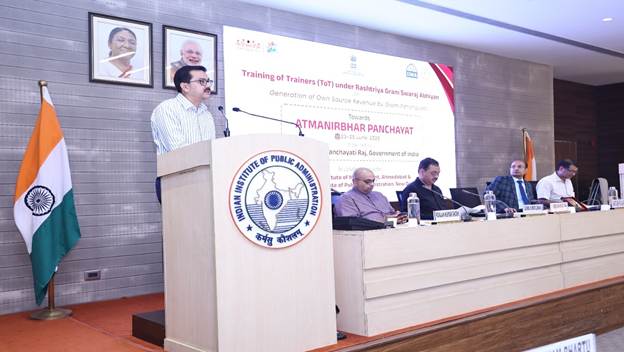
- 27 Jun 2025
In News:
In a significant move to strengthen grassroots governance and fiscal autonomy, the Ministry of Panchayati Raj (MoPR) has launched a Training of Trainers (ToT)programme in collaboration with the Indian Institute of Management (IIM) Ahmedabad and the Indian Institute of Public Administration (IIPA). The initiative aims to enhance the capacity of Panchayats to generate Own Source Revenue (OSR) under the Rashtriya Gram Swaraj Abhiyan (RGSA).
Key Objectives:
- Enhance financial self-reliance of Panchayati Raj Institutions (PRIs).
- Build a cadre of Master Trainers equipped to train Panchayat-level functionaries.
- Shift local governance from a compliance-based model to proactive planning, innovation, and community engagement.
- Promote a culture of fiscal accountability, transparency, and efficient public service delivery at the grassroots level.
Core Focus Areas of Training
- Fundamentals of Own Source Revenue (OSR)
- Revenue enhancement strategiestailored to rural contexts
- Behavioural insights in tax collectionand compliance
- Revenue utilization for development and service delivery
- Village-level financial planningand Gram Panchayat Development Plans (GPDPs)
- Innovative financing mechanisms
- Project management and accountability tools
The training emphasized field orientation, peer learning, and evidence-based practices to ensure real-world applicability and long-term impact.
Institutional Reforms and Digital Integration
As part of the broader reform agenda:
- Model OSR Rules Framework is under development based on state-level legislative reviews.
- A Digital Tax Collection Portal is being created to facilitate:
- Simplified and accountable revenue collection,
- Digital integration with Panchayat-level financial systems.
Case Studies & Best Practices
The training showcased successful Panchayat-level revenue generation models from:Odisha, Gujarat, Goa, Uttar Pradesh, Maharashtra, and the Andaman & Nicobar Islands, highlighting scalable models of local innovation.
Rashtriya Gram Swaraj Abhiyan (RGSA): Background
A Centrally Sponsored Scheme (CSS) launched in 2018 and revamped for 2022–2026, aimed at developing and strengthening the Panchayati Raj System across rural India.
Key Objectives:
- Build governance capacity of PRIs to achieve Sustainable Development Goals (SDGs).
- Empower Panchayat representatives for effective leadership and participatory governance.
- Enhance OSR generation and financial planning at the Panchayat level.
- Promote inclusive development and convergence of schemes.
- Strengthen Gram Sabhas as platforms for citizen engagement.
Salient Features:
- Emphasis on capacity-building and leadership training.
- Promotes decentralisation and compliance with the PESA Act, 1996.
- Encourages use of technology-driven solutions for governance.
- Recognises and incentiviseshigh-performing Panchayats.
- Facilitates collaboration with international and national institutions.
Ambubachi Mela 2025
- 27 Jun 2025
In News:
Thousands of devotees have congregated at the Kamakhya Temple in Guwahati, Assam, to participate in the annual Ambubachi Mela—one of the largest and most significant religious gatherings in Northeast India.
About Ambubachi Mela
- Timing: Celebrated annually during the monsoon season, typically in June.
- Location: Held at the Kamakhya Temple, situated atop Nilachal Hill in Guwahati, Assam.
- Religious Significance:
- Marks the menstrual cycle of Goddess Kamakhya, symbolising the fertility of Mother Earth.
- During this period, the sanctum sanctorum is closed for three days, after which it is ceremonially reopened for darshan.
- Cultural Symbolism:
- Reflects ancient beliefs that associate the Earth with feminine fertility.
- The word ‘Ambubachi’ translates to ‘water flowing’, indicative of both the monsoon rains and the goddess’s fertility.
Kamakhya Temple: Key Facts
- Spiritual Importance:
- Dedicated to Goddess Kamakhya, an incarnation of Shakti.
- Considered one of the most revered sites of Tantric Shaktism in India.
- Recognised as one of the 51 Shakti Peethas, where the yoni (womb) of Sati is believed to have fallen.
- Geographical Location:Located on Nilachal Hill, overlooking the southern bank of the Brahmaputra River.
Architectural Features of Kamakhya Temple
- Architectural Style:
- Combines traditional Nagara style with Saracenic (Mughal) architectural elements, known as the Nilachala Style of Architecture.
- Temple Layout:
- Only temple in Assam with a fully developed ground plan.
- Comprises five main sections:
- Garbhagriha (sanctum sanctorum)
- Antarala (vestibule)
- Jaganmohan (assembly hall)
- Bhogmandir (offering hall)
- Natmandir (performance hall)
- Distinctive Structural Elements:
- Main dome: Modified Saracenic style.
- Antarala: Features a two-roofed structure.
- Bhogmandir: Crowned with five domes, echoing the central shrine.
- Natmandir: Designed with a shell-shaped roof and apsidal end, similar to the namghars (prayer halls) of Assam.
SDG Index 2025

- 27 Jun 2025
In News:
India has ranked 99th out of 193 countries in the Sustainable Development Goals (SDG) Index 2025, marking the first time it has entered the top 100. India scored 67 in the index, as per the Sustainable Development Report 2025 released by the U.N. Sustainable Development Solutions Network.
About the Sustainable Development Report 2025
- Publisher: U.N. Sustainable Development Solutions Network.
- Objective: Tracks annual progress on the 17 Sustainable Development Goals (SDGs) adopted by all UN member states in 2015.
- Coverage: 193 countries.
- Relevance: Assesses national performance across economic, social, and environmental dimensions of sustainability.
Key Highlights of the 2025 Report
Global Trends
- SDG Progress Stalled Globally: Only 17% of the SDG targets are projected to be met by 2030.
- Barriers to Progress: Conflicts, structural vulnerabilities, and constrained fiscal space are key impediments.
- Top Performers:
- Finland ranks 1st, followed by Sweden (2nd) and Denmark (3rd).
- However, many European nations face serious challenges related to climate change and biodiversity loss, due to unsustainable consumption patterns.
Regional Insights
- East and South Asia have shown the fastest progress since 2015, attributed to rapid socioeconomic development.
- India’s Achievement: Ranked 99th, entering the top 100 for the first time.
Sectoral Progress and Setbacks
- Areas of Strong Progress Globally:
- Access to electricity (SDG 7)
- Use of mobile broadband and internet (SDG 9)
- Reduction in child and neonatal mortality (SDG 3)
- Areas of Reversal Since 2015:
- Rising obesity rates (SDG 2)
- Decline in press freedom (SDG 16)
- Poor sustainable nitrogen management (SDG 2)
- Worsening Red List Index (biodiversity loss – SDG 15)
- Weakening Corruption Perceptions Index (SDG 16)
Commitment to Multilateralism
- Top 3 Countries Committed to UN Multilateralism:
- Barbados
- Jamaica
- Trinidad and Tobago
Notable National Rankings
- Brazil (25): Highest among G20 nations.
- Chile (7): Highest among OECD countries.
NAVYA Initiative
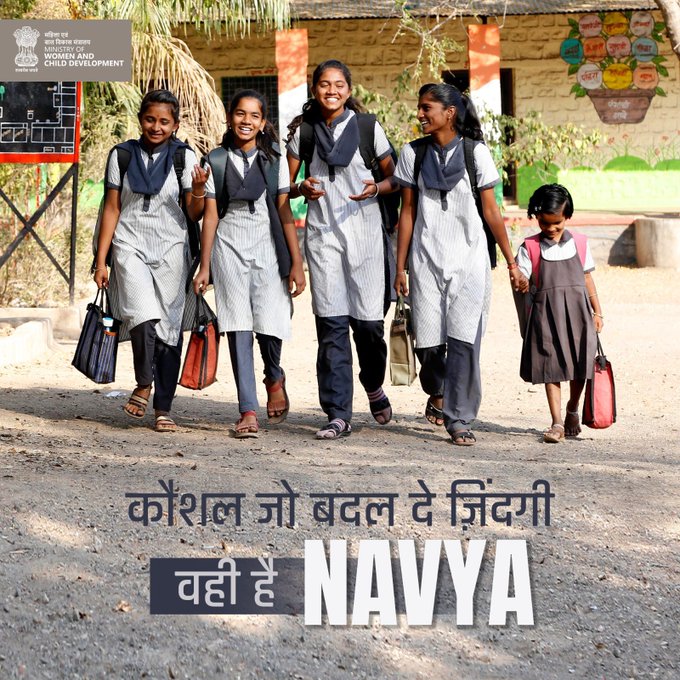
- 26 Jun 2025
In News:
In line with the vision of Viksit Bharat@2047 and the government’s focus on women-led development, the Government of India has launched NAVYA—a pilot initiative aimed at vocationally skilling adolescent girls to empower them with future-ready skills and opportunities.
The programme was officially launched in Sonbhadra, Uttar Pradesh, by the Ministry of Women and Child Development (MWCD) in collaboration with the Ministry of Skill Development and Entrepreneurship (MSDE).
About Nurturing Aspirations through Vocational Training for Young Adolescent Girls (NAVYA):
- Objective:To provide vocational training to adolescent girls aged 16–18 years (with a minimum qualification of Class 10) in non-traditional job roles.
- Target Areas:Implemented as a pilot project in 27 districts across 19 States, including:
- Aspirational districts
- Districts in the North-Eastern States
This reflects the government's commitment to inclusive development and reaching underserved and vulnerable populations.
- Institutional Collaboration:
- Both ministries will formalize convergence to streamline and institutionalize skilling efforts for adolescent girls.
- NAVYA draws upon existing frameworks like the Pradhan Mantri Kaushal Vikas Yojana (PMKVY) and other flagship skill development schemes.
Significance of NAVYA:
Aspect Importance
Empowerment - Enhances skills, confidence, and self-reliance among young girls
Gender Inclusion - Supports women-led development and economic participation
Employment Readiness - Equips girls with job-oriented skills in non-traditional sectors
Regional Equity - Targets backward and underserved regions to reduce disparities
Demographic Dividend - Harnesses the potential of India’s adolescent population in national development
“NAVYA represents a transformative step in ensuring that every adolescent girl becomes a catalyst for change in India’s journey towards an inclusive, skilled, and developed future.”
Rising Evaporative Demand and Thirstwaves

- 26 Jun 2025
In News:
The rising evaporative demand—a measure of how thirsty the atmosphere is—is spotlighting India’s significant data and research gaps related to climate extremes, water stress, and agricultural vulnerability. While global studies are increasingly focusing on "thirstwaves", India lacks adequate research and monitoring frameworks on this critical issue.
What is Evaporative Demand?
- Evaporative demand indicates the near-maximum amount of water that would evaporate from land or vegetation if enough water is available.
- It is not equivalent to actual evaporation, which also depends on water availability.
- Driven by atmospheric factors:
- Temperature
- Wind speed
- Solar radiation
- Humidity
- Cloud cover
High evaporative demand leads to quicker drying of soil and vegetation, increasing drought risk, crop stress, and wildfire susceptibility.
What is a Thirstwave?
- Coined by MeetpalKukal (University of Idaho) and Mike Hobbins (NOAA/University of Colorado).
- Definition: Three or more consecutive days of abnormally high evaporative demand.
- Drivers: Combination of high temperature, low humidity, high solar radiation, and wind speed.
- Impacts:
- Reduces water availability for crops.
- Stresses vegetation.
- Increases fire danger.
- Accelerates drought onset and intensification.
Unlike heatwaves driven by temperature alone, thirstwaves are multi-dimensional and can be more damaging to crops and ecosystems.
Scientific Findings & India-Specific Observations
Global Evidence:
- Kukal& Hobbins’ study (published in Earth’s Future) noted:
- Increased frequency, intensity, and duration of thirstwaves in the U.S.
- Reduced likelihood of zero-thirstwave periods during growing seasons.
India’s Research Gap:
- Chronic shortage of real-time data on evaporative demand and extreme events.
- 1997 Study (Chattopadhyay &Hulme):
- Analyzed 30 years of IMD data.
- Found declining evaporation and potential evapotranspiration, likely due to increased humidity, despite warming.
- Projected future temperature rise would eventually override humidity effects, increasing evaporative demand.
Recent Developments in India:
- IIT Roorkee, NIH & European collaborators (2022):
- Studied 100 river sub-basins.
- Found highest rise in actual evapotranspiration in Northern India, Western Himalayas, and Eastern Himalayan regions.
- Interpreted as signs of increased vegetation or agricultural expansion.
Measurement Techniques:
- Standardised Short-Crop Evapotranspiration:
- A simplified metric to measure water demand of a 12 cm tall, healthy grass under ideal moisture conditions.
- Recommended for crop irrigation planning.
- Rising values signal increasing atmospheric demand and need for adaptive water management.
Implications for India:
- Agriculture and Food Security:
- India’s irrigated crops, especially rice and wheat, are vulnerable to atmospheric water demand.
- Rising thirstwaves threaten to decrease productivity even in well-irrigated regions.
- Water Resource Management:
- Increases soil moisture stress and reduces groundwater recharge.
- Calls for real-time tracking systems for evaporative stress.
- Disaster Preparedness:
- Thirstwaves may precede or exacerbate droughts and wildfires.
- Regions not traditionally drought-prone may still suffer from evaporative shocks.
- Research and Monitoring Needs:
- Lack of indigenous data on thirstwaves.
- Current efforts:Ongoing Indo-U.S. collaboration (University of Idaho & NIT Jalandhar) aims to map South Asian thirstwaves under the Water Advanced Research and Innovation Program.
Way Forward:
- Integrate evaporative demand and thirstwave parameters into IMD's early warning systems.
- Promote region-specific studies on crop sensitivity to evaporative demand.
- Develop adaptive irrigation protocols based on short-crop evapotranspiration trends.
- Sensitise farmers, water managers, and policymakers on atmospheric water demand risks.
- Invest in climate-resilient agriculture and data-driven water governance.
UK’s Terminally Ill Adults (End of Life) Bill

- 26 Jun 2025
In News:
In a landmark decision, the UK House of Commons has passed the Terminally Ill Adults (End of Life) Bill, which seeks to legaliseassisted dying for terminally ill individuals in England and Wales. The Bill passed with a narrow margin of 314 to 291 votes, and will now proceed to the House of Lords for further deliberation.
Key Provisions of the Bill:
- Applicability: England and Wales.
- Eligibility: Only for patients diagnosed with less than six months to live.
- Safeguards:
- The patient must be mentally competent.
- Approval is required from two doctors, a psychiatrist, a senior lawyer, and a social worker.
- The process ensures the patient’s choice is informed and voluntary.
Understanding Euthanasia:
- Etymology: From Greek “eu” (good) + “thanatos” (death) = “good death”.
- Definition: Intentional act of ending a person’s life to relieve suffering from terminal illness or unbearable pain.
Types of Euthanasia:
Type Description Example
Active Deliberate action to end life Lethal injection
Passive Withdrawal of treatment Removing life support
Voluntary With patient’s consent Terminally ill requesting euthanasia
Involuntary Without consent Considered illegal
Ethical Dimensions:
Arguments in favour
- Right to Autonomy: Upholds personal freedom in deciding life and death.
- Compassionate Exit: Eases intractable suffering.
- Dignity in Death: Ensures control over one’s final moments.
- Relief for Families: Reduces emotional and financial strain.
- Medical Resource Optimization: Redirects care to patients with curable conditions.
Arguments Against
- Sanctity of Life: Human life is sacred and must not be intentionally ended.
- Risk of Coercion: Vulnerable groups may be pressured into opting for death.
- Existence of Palliative Alternatives: Modern hospice care offers non-lethal relief.
- Slippery Slope: May lead to misuse or extension to non-terminal cases.
- Erosion of Medical Ethics: Challenges the healer role of doctors.
Indian Legal Perspective:
India has grappled with the euthanasia debate in various judicial pronouncements:
- Gian Kaur v. State of Punjab (1996): Right to die not included under Article 21.
- Aruna Shanbaug Case (2011): Allowed passive euthanasia under strict conditions.
- Common Cause v. Union of India (2018):Recognised the right to die with dignity and permitted Advance Medical Directives.
UNEP’s NDC Cooling Guidelines 2025

- 26 Jun 2025
In News:
The United Nations Environment Programme (UNEP) has released the NDC Cooling Guidelines 2025, aimed at supporting countries in integrating sustainable cooling strategies into their Nationally Determined Contributions (NDCs) under the Paris Agreement. The initiative addresses both climate mitigation and adaptation challenges posed by rising global temperatures and energy demand.
About the NDC Cooling Guidelines 2025
- Purpose:Provides a structured global framework for countries to incorporate sustainable cooling into national climate action plans, balancing mitigation, adaptation, and developmental needs.
- Developed by:UNEP’s Cool Coalition NDC Working Group, in collaboration with partners like UNDP.
- Primary Objectives:
- Mainstream sustainable cooling in national NDCs.
- Reduce sectoral emissions by 60% by 2050.
- Improve access to cooling for 1.1 billion vulnerable people.
- Establish robust Monitoring, Reporting, and Verification (MRV) mechanisms.
- Align with the Kigali Amendment to the Montreal Protocol and the Global Cooling Pledge.
Global Cooling Landscape: Key Data Points
- Current Impact:
- Cooling accounts for nearly 7% of global GHG emissions, projected to exceed 10% by 2050.
- Cooling consumes 20% of global building electricity, and up to 50% in countries like UAE.
- Access Challenges:1.1 billion people worldwide lack access to efficient and affordable cooling, threatening lives, food security, and healthcare.
- Efficiency Potential:By doubling appliance efficiency, access can expand sixfold without proportionate emission growth.
Challenges in the Cooling Sector
- Rising Emissions:Without immediate policy interventions, emissions from cooling are expected to double by mid-century, increasing climate and energy pressures.
- Access Inequality:Many low-income and rural populations remain exposed to extreme heat due to lack of sustainable cooling.
- Policy Gaps:Only 27% of updated NDCs currently include specific energy efficiency targets related to cooling.
- Gendered Impacts:Women, especially in vulnerable communities, face greater health risks from inadequate cooling and heat stress.
- Reinforcing Heat-Cooling Loop:Increasing temperatures escalate cooling demand, which if met with inefficient systems, leads to more emissions, exacerbating global warming—a vicious cycle.
Six-Step Framework in the Guidelines
- Baseline Assessment:Measure current energy use and refrigerant emissions in the cooling sector.
- Target Setting:Define clear, time-bound targets aligned with national climate priorities.
- Monitoring, Reporting, Verification (MRV):Develop transparent systems to track and report progress.
- Policy Tools:
- Introduce Minimum Energy Performance Standards (MEPS)
- Phase down high-GWP refrigerants
- Promote urban greening and passive cooling techniques
- Governance & Institutional Support:Establish cross-sectoral coordination, incorporating gender-sensitive planning.
- Financing & Equity:Mobilize investments and develop policies to enable equitable access to sustainable cooling technologies.
Country-Level Initiatives
- Nigeria:Integrated National Cooling Action Plan (NCAP) into its NDC, with a focus on heat-resilient rural infrastructure.
- United Arab Emirates (UAE):Adopted district cooling systems and high-efficiency air conditioning in its updated climate roadmap (NDC 3.0).
- Grenada:Committed to becoming the first HFC-free nation, aiming for complete refrigerant phase-down.
INS Nilgiri

- 26 Jun 2025
In News:
INS Nilgiri, the first stealth frigate of the indigenously developed Project 17A series, has recently been inducted into the Eastern Naval Command. It will play a crucial role in the Eastern Sword-Sunrise Fleet.
Key Facts:
- Class and Design:INS Nilgiri belongs to the Nilgiri-class frigates under Project 17A, an advanced stealth warship initiative. It is an improved version of the earlier Shivalik-class (Project 17) frigates.
- Design and Construction:The vessel has been designed by the Indian Navy’s Warship Design Bureau and constructed by Mazagon Dock Shipbuilders Limited (MDL) in Mumbai.
- Sister Ships Under Construction:Six other frigates of the same class—Himgiri, Taragiri, Udaygiri, Dunagiri, Vindhyagiri, and Mahendragiri—are currently being built at MDL, Mumbai and Garden Reach Shipbuilders and Engineers (GRSE), Kolkata.
Technical Specifications & Capabilities:
- Dimensions & Displacement:
- Length: 149 meters
- Displacement: Approximately 6,670 tonnes
- Propulsion:
- Equipped with a CODAG (Combined Diesel and Gas) propulsion system
- Maximum speed: Up to 28 knots
- Combat Capability:
- Anti-Air Warfare: Armed with 16 Barak-8 surface-to-air missiles
- Surface Warfare: Equipped with 8 BrahMos supersonic cruise missiles for anti-ship and land-attack roles
- Surveillance & Targeting Systems:
- MF-STAR Radar: Offers 360-degree situational awareness
- 3D AESA Radar: Enables tracking of multiple targets simultaneously
- Nishant Radar: Enhances fire control and targeting precision
- Network-Centric Warfare:The onboard Combat Management System (CMS) seamlessly integrates various sensors and weapons, allowing for coordinated operations with other naval platforms.
Significance:
The induction of INS Nilgiri marks a major milestone in India’s pursuit of a modern, self-reliant naval fleet. It enhances the Indian Navy’s blue-water capabilities, contributing to maritime dominance and regional security in the Indo-Pacific.
Tomahawk Missiles
- 25 Jun 2025
In News:
In a major escalation of the Iran-Israel conflict, the United States has reportedly launched precision strikes on Iran’s nuclear infrastructure, targeting key sites at Fordow, Natanz, and Esfahan. These attacks were carried out using Tomahawk cruise missiles and GBU-57 bunker busters, marking a critical intervention by the US in the unfolding regional crisis. President Donald Trump termed the strikes a “clear warning” to Iran, signalling the potential for intensified military action if diplomatic overtures are rejected.
What Are Tomahawk Missiles?
The Tomahawk missile is a long-range, subsonic, all-weather cruise missile primarily operated by the United States Navy and Royal Navy. It is designed for precision strikes on high-value or heavily defended targets, including hardened or buried infrastructure such as nuclear sites.
- Launch platforms: Ships and submarines
- Flight path: Low-altitude terrain-following flight to evade radar
- Use case: Strategic, surgical strikes in contested or defended environments
Design and Capabilities
- Length: ~5.6 meters (without booster)
- Weight: Up to 1,600 kg
- Speed: ~880 km/h (subsonic)
- Range: Over 1,600 km (varies by variant)
- Flight altitude: As low as 30–50 meters
- Warheads:
- Unitary high-explosive
- Cluster munitions
- Nuclear warheads (retired from use)
Navigation and Guidance Systems
Tomahawk missiles are known for pinpoint accuracy, achieved through a multi-layered guidance system:
- GPS (Global Positioning System) and INS (Inertial Navigation System) for real-time course tracking
- TERCOM (Terrain Contour Matching): Compares terrain under flight path with stored maps
- DSMAC (Digital Scene Matching Area Correlation): Matches live terrain imagery with onboard target data
- Data-link capability: Allows for in-flight re-targeting, mission abort, or loitering over areas
Variants and Modern Upgrades
- Tomahawk Block IV (TLAM-E): Most modern variant, featuring:
- In-flight reprogramming
- Target loitering
- Real-time battle damage assessment
- Two-way satellite communication
Historical Combat Usage
Tomahawk missiles have been extensively used in US military operations:
- Gulf War (1991): ~280 missiles used in the opening strikes
- Operation Infinite Reach (1998): Targeted terrorist camps in Sudan and Afghanistan
- Iraq War (2003): Hundreds used during the initial “shock and awe” campaign
- Libya Intervention (2011): Destroyed air defence infrastructure
- Syria (2017): 59 Tomahawks used against Shayrat Airbase in retaliation for chemical attacks
INS Tamal
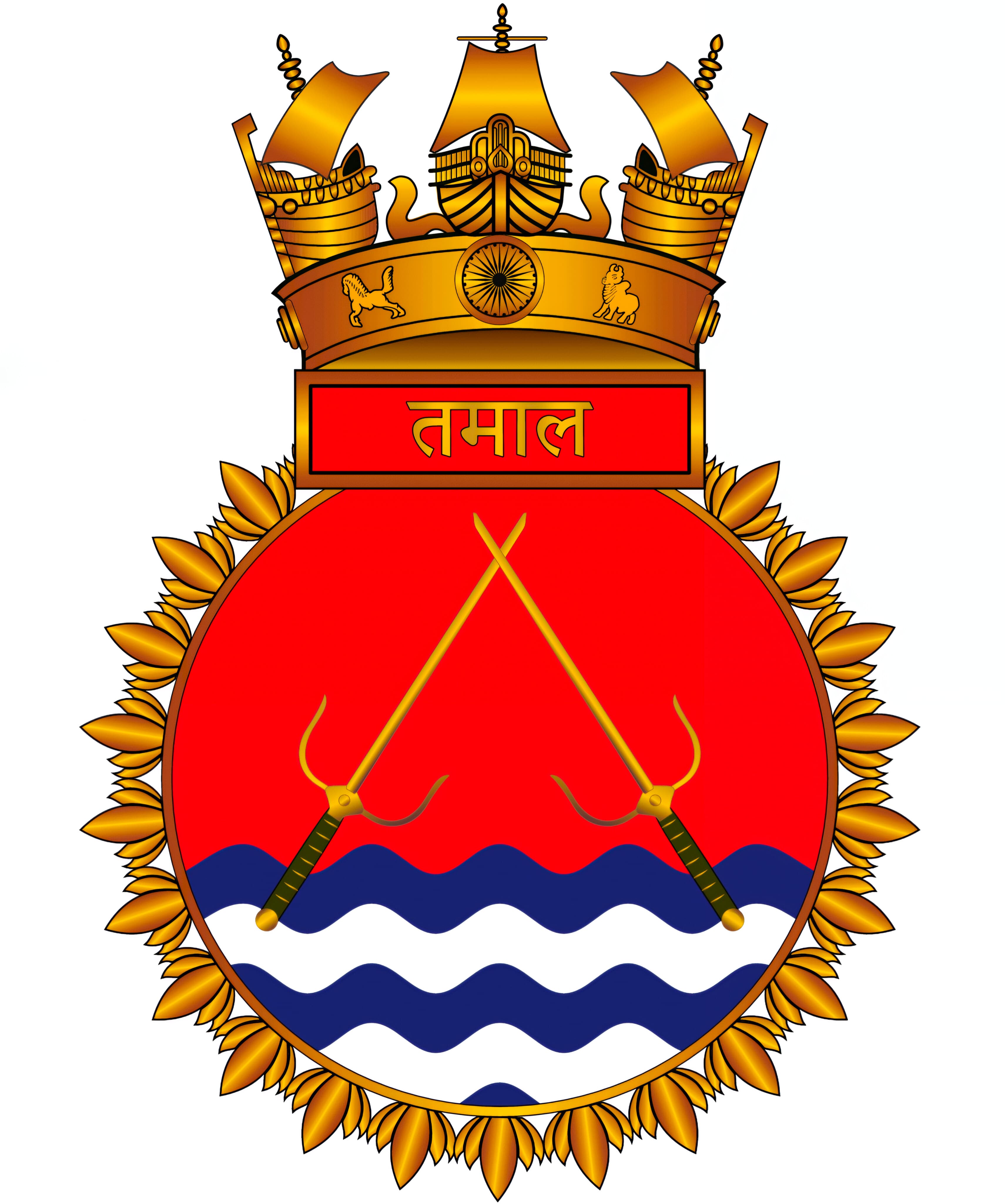
- 25 Jun 2025
In News:
In a landmark development for India's maritime defence, the Indian Navy is set to commission its latest stealth multi-role frigate, INS Tamal, on 1st July 2025 at Yantar Shipyard, Kaliningrad, Russia
Overview:
- Class & Series: INS Tamal is the second ship of the Tushil-class, an upgraded variant of the Talwar and Teg class frigates, forming part of the Krivak class series built under Indo-Russian cooperation.
- Total Induction: With Tamal’s addition, India will operate ten ships with common capabilities across four related classes.
- Construction: Built at Yantar Shipyard with oversight from Indian specialists under the Warship Overseeing Team (WOT), Kaliningrad, under the Embassy of India, Moscow.
Symbolism and Identity
- The name ‘Tamal’ represents the mythical sword of Indra, the King of Gods.
- The ship’s mascot blends India’s Jambavant, the immortal bear king of mythology, with Russia’s Eurasian Brown Bear, symbolising Indo-Russian defence cooperation.
- The ship’s motto: ‘Sarvada Sarvatra Vijaya’ (Victorious Always Everywhere).
Make in India & Indigenous Content
- INS Tamal is the last warship to be inducted from a foreign source, aligning with Aatmanirbhar Bharat and Make in India initiatives.
- 26% indigenous content, including:
- BrahMos supersonic cruise missiles (anti-ship & land attack roles)
- HUMSA NG Mk II sonar, Indian radars, and communication systems
- Indian OEMs involved: BrahMos Aerospace, BEL, Keltron, Nova Integrated Systems (Tata), Elcome Marine, Johnson Controls India, among others.
- Indigenous components have more than doubled to 33 systems compared to previous imports.
Key Features & Capabilities
- Displacement: 3,900 tonnes | Length: 125 metres
- Top speed: Over 30 knots
- Armament & Combat Systems:
- Vertically Launched Surface-to-Air Missiles (VL-SAM)
- Improved 100 mm main gun, 30 mm CIWS
- Heavyweight torpedoes, anti-submarine rockets
- EO/IR system, fire control radars
- Aviation Support: Flight deck for Air Early Warning & Multi-Role helicopters
- Sensors & Network:
- Surface Surveillance Radar
- Advanced Electronic Warfare suite
- Network Centric Warfare capabilities
- Trials: Successfully completed 3-month sea trials, validating systems and weapons in challenging winter conditions (St. Petersburg & Kaliningrad).
Strategic Importance
- Upon commissioning, INS Tamal will join the Indian Navy’s Western Fleet—the 'Sword Arm' of the Navy under Western Naval Command.
- Reinforces India’s blue water naval ambitions, enhancing operational readiness in multi-threat maritime environments.
- Embodies two decades of Indo-Russian naval cooperation and represents a transition towards domestic warship production.
Gwada Negative

- 25 Jun 2025
In News:
In a landmark discovery for transfusion science, France’s national blood agency (Établissement Français du Sang – EFS), in June 2025, identified a completely new blood group system. Officially recognized by the International Society of Blood Transfusion (ISBT) as the 48th blood group system, it is termed EMM-negative and is informally called “Gwada Negative”, after Guadeloupe, the origin of the only known individual with this blood type.
What is Gwada Negative (EMM-negative)?
- EMM-negative is defined by the absence of the EMM antigen, a high-incidence antigen normally present on red blood cells in nearly all humans.
- High-incidence antigens are so common that individuals lacking them are considered extremely rare and face critical challenges in blood transfusion compatibility.
- The ISBT registered this as ISBT042, making it the latest addition to global blood group systems.
Discovery Timeline
- 2011: A 54-year-old woman from Guadeloupe, living in Paris, underwent pre-surgical blood testing. Her blood showed unidentified antibodies that did not match any known blood group systems.
- 2019: With advancements in Next-Generation Sequencing (NGS), researchers led by Dr. Thierry Peyrard (EFS) identified the unique genetic mutation responsible for the absence of the EMM antigen.
- 2025: After peer-reviewed validation, the ISBT officially recognised the EMM-negative system during its Milan meeting.
Why is it So Rare?
- This woman is the only known person in the world with the EMM-negative blood type.
- She inherited the rare gene mutation from both parents, leading to a complete absence of the EMM antigen in her red blood cells.
- Since the EMM antigen is nearly universal, her blood is compatible only with itself, making transfusions extremely high-risk unless a genetically identical donor is found.
Clinical Significance
- Individuals lacking high-incidence antigens like EMM may develop alloantibodies — immune responses against transfused red cells containing those antigens.
- Transfusion of EMM-positive blood into such individuals can cause hemolytic reactions, including life-threatening hemolysis (premature red blood cell breakdown).
- In this case, no donor blood currently available is safe for transfusion into the patient.
Implications for Transfusion Medicine
- Highlights the need for rare blood donor registries, international cooperation, and advanced genetic screening technologies to identify such rare phenotypes.
- Encourages development of precision-matching protocols in complex clinical and emergency situations.
- Expands the understanding of human immunohematological diversity and redefines transfusion compatibility standards.
Kounis Syndrome
- 25 Jun 2025
In News:
The recent sudden death of Indian industrialist Sanjay Kapur during a polo match in London has drawn national attention to Kounis Syndrome, a rare but serious medical condition. Reports suggest he may have inhaled a bee, which stung him inside the throat—leading to a cardiac arrest, potentially triggered by an acute allergic reaction. This tragic incident has raised awareness about the interaction between allergic reactions and cardiac emergencies, especially in seemingly healthy individuals.
What is Kounis Syndrome?
Kounis Syndrome is a rare medical condition in which a severe allergic or hypersensitivity reaction triggers a coronary event, such as a heart attack. It is often termed “allergic angina” or “allergic myocardial infarction.”
Mechanism
- Triggered by allergens such as insect stings, drugs, or foods.
- Leads to the activation of mast cells, which release histamine and cytokines.
- These chemicals cause spasms, plaque rupture, or clot formation in coronary arteries.
- Result: Reduced blood flow to the heart, causing ischemia or infarction.
Types of Kounis Syndrome
- Type I: In individuals with normal coronary arteries – allergic reaction causes artery spasm and possible heart attack.
- Type II: In those with existing coronary artery disease – allergic reaction destabilizes plaques, causing infarction.
- Type III: In patients with coronary stents – hypersensitivity leads to thrombosis within stents.
Triggers of Kounis Syndrome
- Insect stings (bee, wasp)
- Medications (NSAIDs, antibiotics)
- Foods (nuts, shellfish, kiwi)
- Environmental allergens (latex, contrast dyes)
- Underlying health conditions (e.g., mastocytosis)
Symptoms
- Chest pain
- Shortness of breath or wheezing
- Swelling (angioedema), hives, or rash
- Low blood pressure
- ECG changes: ST-segment elevation or depression
Diagnosis and Treatment
- Diagnosis: Clinical history, ECG, cardiac enzymes, allergy tests.
- Treatment includes:
- For allergy: Antihistamines, corticosteroids, epinephrine
- For cardiac care: Oxygen, nitrates, antiplatelet drugs, beta-blockers
Why Mouth/Throat Bee Stings Are Dangerous
- Immediate airway swelling
- Increased absorption of venom into bloodstream
- Enhanced risk of anaphylaxis and cardiac arrest
Even people without a history of allergy can experience severe reactions if stung inside the mouth or throat.
Warning Signs After a Bee Sting
- Difficulty breathing
- Swollen lips, tongue, or throat
- Rash or itching
- Dizziness or fainting
- Rapid or weak heartbeat
- Nausea or unconsciousness
Immediate emergency care is essential.
Himalayan Brown Bear
- 25 Jun 2025
In News:
In a significant development for Himalayan biodiversity, a rare sighting of a Himalayan Brown Bear with its family has been reported for the first time in the Dumka region between Nelang and Bhairon Ghati, within Gangotri National Park, Uttarakhand. The sighting has enthused wildlife experts and is viewed as a positive indicator of range expansion and ecosystem resilience in this fragile high-altitude region.
Significance of the Sighting
- This marks the first recorded presence of a brown bear in this specific stretch of the park.
- Previously, sightings were limited to Gomukh (6 bears) and Kedartal (3 bears), both located above 3,000 m.
About the Himalayan Brown Bear
- Scientific Name: Ursus arctos isabellinus
- Common Names: Himalayan Red Bear, Isabelline Bear; known as Denmo in Ladakhi.
- It is believed to be one of the most ancient brown bear lineages and may have inspired the Yeti legend due to its upright gait.
Distribution and Habitat
- Found in the northwestern and central Himalayas: India, Pakistan, Nepal, Bhutan, and China (Tibet).
- In India: Exists in fragmented populations in Jammu & Kashmir, Himachal Pradesh, and Uttarakhand.
- Inhabits elevations between 3,000 and 5,500 meters, usually above the timberline in alpine meadows and snow-clad regions.
Ecological Features
- Size: Males average 1.9 m and 135 kg; females 1.6 m and 70 kg.
- Fur: Sandy or reddish-brown; thick to endure high-altitude cold.
- Diet: Omnivorous – consumes roots, berries, nuts, small mammals, fish, and insects.
- Behavior: Solitary, except during mating or a mother with cubs; hibernates during winter in dens.
- Lifespan: 20–30 years in the wild.
Conservation Status
- IUCN Red List: Critically Endangered
- Wildlife (Protection) Act, 1972 (India): Schedule I
- CITES: Appendix I
Subarnarekha River

- 24 Jun 2025
In News:
A flash flood in the Subarnarekha River affected over 50,000 people in Balasore district, Odisha. The flooding was triggered by heavy rainfall and the release of water from Chandil Dam in Jharkhand.
About Subarnarekha River
Origin:
- Arises near Piska/Nagri, close to Ranchi, in Jharkhand.
- The name "Subarnarekha" means “Streak of Gold”, referring to traces of gold once found in the river’s origin area.
Geographical Course:
- States Covered: Jharkhand, West Bengal, Odisha.
- Mouth: Empties into the Bay of Bengal near Talsari, in Odisha.
- Total Length: Approx. 395 km.
- Drainage Basin Area: 18,951 sq. km, making it a relatively small multi-state river basin.
- Course Details: Flows through Paschim Medinipur (WB) and Balasore (Odisha) after originating in Jharkhand.
Key Features:
- Hundru Falls: A well-known waterfall on Subarnarekha, located in Jharkhand, with a drop of 98 metres.
- The river system is independent, not a tributary of any larger river.
- Known for its historical and cultural significance due to gold particles in its sands.
Major Tributaries:
- Kharkai (joins at Jamshedpur)
- Kanchi, Roro, Harmu Nadi, Dulunga, Karru, Karakari, Singaduba, Kodia, Dhamra
About Chandil Dam
Location:
- Situated in Chandil, Seraikela Kharsawan district, Jharkhand.
- Built near the confluence of the Subarnarekha River and Karkori River (originating from Hundru Falls).
Purpose:
- Multi-purpose project serving irrigation, flood control, and tourism.
- Plays a significant role in managing water flow in the Subarnarekha basin.
Estimates Committee
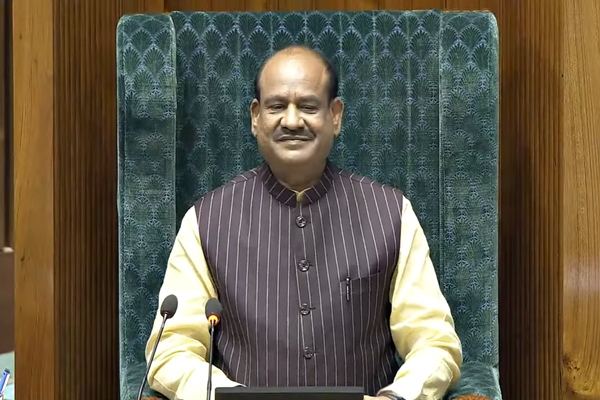
- 24 Jun 2025
In News:
The Lok Sabha Speaker inaugurated the National Conference of Estimates Committees in Mumbai to mark 75 years of the Parliamentary Estimates Committee.
About the Estimates Committee:
- Type: Parliamentary Financial Standing Committee (Lok Sabha).
- Established in: 1950, under the Rules of Procedure of Lok Sabha, after the adoption of the Constitution.
- Purpose: To examine how public funds are allocated and utilized, and recommend improvements in economy, efficiency, and accountability.
Composition:
- Total Members: 30 Lok Sabha MPs.
- Exclusion: Ministers are not eligible to be members.
- Chairperson: Appointed by the Speaker of Lok Sabha.
- Term: One year, renewable annually.
Selection Process:
- Members are elected annually by the Lok Sabha through proportional representation using the single transferable vote system.
Key Functions:
- Examine budget estimates of various ministries and departments.
- Suggest reforms for better economy and efficiency in public expenditure.
- Recommend alternative policies for improved governance and financial management.
- Evaluate effectiveness of spending aligned with policy objectives.
- Suggest improvements in the presentation of budget estimates to Parliament.
Exclusions: Does not examine Public Sector Undertakings — these are dealt with by the Committee on Public Undertakings.
Working Mechanism:
- Selects specific departments or statutory bodies for scrutiny.
- Seeks inputs from government officials and external experts.
- Undertakes study visits and on-ground assessments (with prior approval).
- Holds formal evidence sessions in Parliament.
- Submits findings and recommendations through reports to the Lok Sabha.
- The Government must submit Action Taken Reports (ATR) within six months.
Achievements (as of 2025):
- Total Reports Presented: 1,184
- 656 Original Reports
- 528 Action Taken Reports
- Covered nearly all major ministries and departments.
- Contributed to strengthening Parliamentary financial oversight and ensuring fiscal discipline.
Operation Midnight Hammer
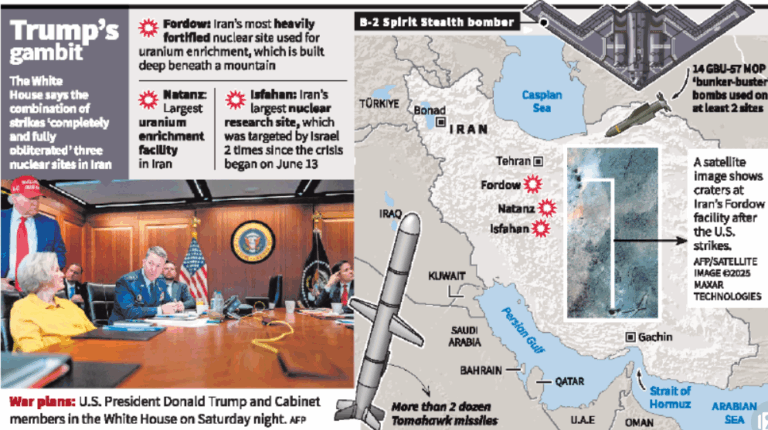
- 24 Jun 2025
In News:
The United States launched a classified military operation named Operation Midnight Hammer, targeting Iran’s major nuclear sites at Fordow, Natanz, and Isfahan, claiming significant damage to its nuclear infrastructure.
About Operation Midnight Hammer:
- A covert US airstrike intended to degrade Iran’s nuclear weapons program.
- Launched by: US Department of Defense.
- Objective: Destruction of fortified nuclear facilities and demonstration of US strategic air power.
Key Assets Deployed:
- B-2 Spirit Stealth Bombers equipped with GBU-57A/B Massive Ordnance Penetrators (MOPs) – “bunker-buster” bombs designed to penetrate over 200 feet of reinforced concrete.
- Tomahawk Land Attack Cruise Missiles launched from US submarines.
- Support aircraft and decoys for air defence suppression.
B-2 Spirit Stealth Bomber:
- Type: Long-range strategic stealth bomber of the US Air Force.
- Developed by: Northrop Grumman (1980s).
- Cost: Approx. $2.1 billion per unit – one of the most expensive aircraft in the world.
- Range: Over 6,000 nautical miles without refuelling.
- Crew: Operated by two pilots.
Weapons and Capabilities:
- Payload Capacity: Over 40,000 pounds.
- Armament Options:
- 2 × GBU-57A/B MOPs
- 16 × B83 nuclear bombs (part of US nuclear triad)
- Precision-guided weapons: JDAM, JSOW, JASSM-ER.
- Stealth Features: Radar cross-section as small as a bird – allows evasion of sophisticated air defences.
Strategic Significance:
- Enhances the US’s global precision strike capabilities.
- Reinforces the deterrence role of the B-2 in both conventional and nuclear domains.
- Capable of targeting heavily fortified underground facilities.
- Proven operational effectiveness in Afghanistan, Libya, and now Iran.
SSLV Technology Transfer
- 24 Jun 2025
In News:
In a historic development for India's space sector, the Indian Space Research Organisation (ISRO) will, for the first time, completely transfer rocket technology to a domestic firm. Hindustan Aeronautics Limited (HAL) has secured the Transfer of Technology (ToT) for the Small Satellite Launch Vehicle (SSLV) through a competitive process facilitated by IN-SPACe, marking a new era of private-sector participation in space.
What is the SSLV Technology Transfer?
- Nature of ToT: Complete technology handover of ISRO’s SSLV to HAL.
- Awarded By: Indian National Space Promotion and Authorisation Centre (IN-SPACe) after a two-stage national selection.
- Winning Bid: HAL won the bid with a ?511 crore offer — the highest among the contenders.
- Other Bidders: Consortia led by Alpha Design (Bengaluru) and Bharat Dynamics Limited (Hyderabad).
- Objective: To empower the private sector to build, market, and launch rockets independently, thus reducing reliance on ISRO for small satellite missions.
Key Features of the SSLV ToT
Parameter Details
Ownership - HAL will own and operate the SSLV, with rights to modify its design and choose commercial partners.
Production Capability - HAL aims to produce 6–10 SSLVs annually, based on demand.
ToT Duration - 2 years of technology handholding by ISRO, during which HAL will manufacture at least two SSLV prototypes.
Post-ToT - HAL will operate independently post-ToT and may enter contracts for commercial launch services.
Contractual Roles - ISRO (technical), IN-SPACe (regulatory + ToT coordination), NSIL (commercial interface), HAL (execution).
About Hindustan Aeronautics Limited (HAL)
- Established: 23 December 1940 (as Hindustan Aircraft Limited).
- HQ: Bengaluru, Karnataka.
- Ministry: Ministry of Defence, Government of India.
- Core Role: India’s largest defence and aerospace PSU involved in aircraft, helicopters, engines, and now space systems.
- Key Contributions:
- Manufactured MiG-21, SU-30MKI, LCA Tejas.
- Supplied components for GSLV Mk-III, Mars Orbiter Mission, and Gaganyaan.
- Collaborated with ISRO on cryogenic engines and launch vehicle structures.
- Publicly Listed: On BSE and NSE since 2018.
Significance:
- First Full Rocket ToT in India: Unlike earlier manufacturing contracts (e.g., PSLV), SSLV is entirely owned and operated by HAL.
- Boosts Private Sector Role: Aligns with India’s space sector reforms to commercialize launch services.
- Fosters Innovation & Autonomy: HAL can redesign the SSLV and partner globally, making India more competitive in the small satellite launch market.
- Strategic Diversification: HAL adds space systems to its portfolio, without affecting defence operations.
Green Hydrogen Production
- 24 Jun 2025
In News:
In a significant scientific milestone, Indian researchers have developed a next-generation, scalable solar-driven device for producing green hydrogen—offering a major boost to clean energy innovation and India’s energy transition goals.
Key Highlights:
- Developed By: Centre for Nano and Soft Matter Sciences (CeNS), Bengaluru — an autonomous institute under the Department of Science and Technology (DST).
- Publication: The findings were published in the Journal of Materials Chemistry A (Royal Society of Chemistry).
What Is Green Hydrogen?
Green hydrogen is produced by splitting water molecules using renewable energy sources, especially solar and wind, without any greenhouse gas emissions. It is a clean energy carrier with the potential to decarbonize heavy industries, power vehicles, and store energy.
The Innovation: Solar-Driven Water Splitting Device
- The device uses only solar energy to split water and produce hydrogen.
- It employs a silicon-based photoanode with an n-i-p heterojunction structure:
- n-type TiO?, intrinsic (undoped) Si, and p-type NiO layers.
- This structure enhances charge separation and transport efficiency.
- Fabrication via magnetron sputtering, a scalable, industry-compatible process.
Key Performance Metrics
- Surface photovoltage: 600 millivolts (mV)
- Low onset potential: ~0.11 VRHE
- Stability: Operated continuously for over 10 hours in alkaline medium with only ~4% performance degradation.
- Successfully scaled to a 25 cm² photoanode, showing strong solar-to-hydrogen conversion.
Advantages of the Device
Feature Benefit
Pure solar operation No external power or fossil fuel input
High energy efficiency Better light absorption, reduced recombination loss
Material use Low-cost, earth-abundant materials
Durability Stable under alkaline conditions
Scalability Demonstrated potential for industrial-scale production
Strategic Significance
- Accelerates India’s National Green Hydrogen Mission and hydrogen-based economy.
- Supports India’s net-zero emission commitments and climate action.
- Offers a cost-effective, clean energy alternative to fossil fuels in:
- Hard-to-abate sectors like steel and cement
- Clean transport solutions
- Renewable energy storage systems
B-2 Spirit Bomber
- 23 Jun 2025
In News:
In a major escalation of the ongoing US–Iran tensions, the United States deployed the B-2 Spirit stealth bomber to strike Iran’s fortified nuclear infrastructure, including the heavily guarded Fordow enrichment facility, which was described by President Donald Trump as the “crown jewel” of Iran’s nuclear programme. The strikes signal a new phase in the geopolitical standoff, showcasing advanced US airpower and precision capabilities.
What is the B-2 Spirit Bomber?
The B-2 Spirit, developed by Northrop Grumman during the Cold War, is one of the most advanced strategic bombers in the world. Originally built for penetrating heavily defended Soviet airspace, it remains a key asset in the US Air Force due to its stealth capabilities, long range, and precision payload delivery.
Only 21 B-2 bombers were built, each costing an estimated $2.1 billion, making it one of the most expensive aircraft ever developed. Its bat-wing design and radar-absorbent coating significantly reduce its radar cross-section, making it almost invisible to radar and ideal for deep penetration missions in hostile territory. It is operated by a two-person crew and extensively automated to reduce pilot workload.
Why was it used in the Iran strikes?
The B-2 Spirit was chosen for the Iran mission because of its unique combination of stealth, range, and payload capacity. The Fordow facility, built deep within a mountain and protected by sophisticated air defences, required a bomber that could both evade detection and deliver a bunker-busting payload with high precision.
During the mission, the B-2s were reportedly equipped with the GBU-57A/B Massive Ordnance Penetrator (MOP) — a 30,000-pound bomb specifically designed to destroy deeply buried and fortified targets like Fordow. Due to the weapon’s size and weight, a B-2 can carry only one or two MOPs per sortie. Reports indicate that six MOPs were dropped on Fordow, demonstrating the operational effectiveness of the B-2 for such critical missions.
Capabilities and Strategic Role
The B-2 has an unrefueled range of over 6,000 nautical miles (approximately 11,000 km), enabling it to undertake intercontinental missions directly from the United States. Past missions have seen the B-2 operate from Missouri to targets in Afghanistan, Libya, and now Iran, demonstrating its global strike capability.
With a total payload capacity exceeding 40,000 pounds (18,000 kg), the B-2 can carry both conventional and nuclear weapons. It forms a crucial part of the US nuclear triad, capable of delivering up to 16 B83 nuclear bombs. Its ability to carry nuclear and precision-guided munitions gives it unmatched strategic versatility.
Weapon Systems Compatible with the B-2
Beyond the MOP, the B-2 can be armed with a variety of precision and standoff weapons, including:
- JDAMs (Joint Direct Attack Munitions): GPS-guided bombs used for high-accuracy strikes on fixed targets.
- JSOW (Joint Standoff Weapons): Glide bombs launched from a distance, allowing engagement of targets outside enemy air defence range.
- JASSM and JASSM-ER (Joint Air-to-Surface Standoff Missiles): Long-range cruise missiles, with the extended-range variant capable of striking targets up to 500 miles (805 km) away.
This versatility allows the B-2 to adapt to multiple mission profiles, from conventional warfare to nuclear deterrence.
Strategic and Geopolitical Implications
The deployment of the B-2 in this mission has both tactical and symbolic implications. Tactically, it underscores the US military’s ability to deliver precision strikes on highly protected strategic infrastructure. Strategically, it sends a strong signal to adversaries about the technological edge and operational reach of American military power.
From a geopolitical perspective, the strikes could exacerbate tensions in the already volatile West Asian region, heighten concerns about nuclear proliferation, and potentially provoke retaliatory actions by Iran and its regional allies. It also raises questions about the future of US-Iran relations and the fragility of nuclear diplomacy in the region.
Lenacapavir
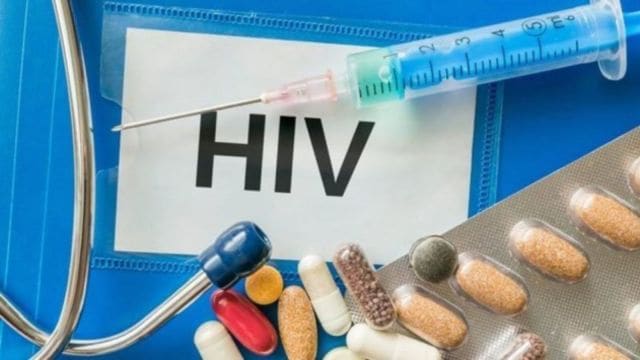
- 23 Jun 2025
In News:
The United States Food and Drug Administration (FDA) on Wednesday approved Lenacapavir (LEN), the most promising HIV prevention medicine to be made so far.
What is Lenacapavir (LEN)?
- Type: Antiretroviral drug used as Pre-Exposure Prophylaxis (PrEP) for HIV prevention.
- Mechanism: Prevents HIV infection in HIV-negative individuals at high risk.
- Efficacy: Clinical trials show it prevents 99.9% of HIV transmissions.
- Dosage: Injectable form, administered twice a year.
Recent Development
- Approved by: United States Food and Drug Administration (US FDA) – June 2025.
- Brand name: To be marketed as Yeztugo by Gilead Sciences.
- Described as the most promising HIV prevention drug to date.
Global and Indian Context
Global Need
- LEN could be a game-changer in ending the global HIV/AIDS epidemic.
- However, cost remains a barrier—initially priced at over $40,000 per person/year, now reduced to $28,218.
Indian Reality
- Despite India's 92% contribution to global ART supply, PrEP is yet to be rolled out under India’s National AIDS Control Programme (NACP).
- The National AIDS Control Organisation (NACO) has not yet integrated PrEP or LEN into national policy.
India’s Role in Equitable Access
Expert View:
- India must take the lead in making LEN accessible, affordable, and timely.
- Equitable distribution is critical to preventing new infections and achieving AIDS elimination targets.
- Urges Indian regulators and generic companies to fast-track licensing and manufacturing.
Why this matter?
Public Health Impact
- LEN could stop HIV transmission at scale if made widely available in low- and middle-income countries (LMICs).
- Its twice-a-year injectable nature increases adherence, especially in vulnerable populations.
Cost Savings
- Prevention through PrEP like LEN is more cost-effective than providing lifelong ART after infection.
India’s Strategic Position
- India already serves as the global hub for HIV treatment through its generic pharmaceutical capacity.
- India’s leadership is central to global HIV prevention strategies including:
- Treatment as Prevention (TasP)
- Test and Treat
- Post-Exposure Prophylaxis (PEP)
- Pre-Exposure Prophylaxis (PrEP)
Policy Recommendations
- Fast-track regulatory approvals for generic LEN in India.
- Integrate PrEP and injectable LEN into NACO guidelines.
- Ensure price transparency and accessibility through public-private collaboration.
- Collaborate with global health bodies (WHO, UNAIDS, Global Fund) to position India as the equitable access leader.
Samson Option
- 23 Jun 2025
In News:
The Samson Option, Israel’s controversial and undeclared nuclear deterrence doctrine, has returned to global focus amid escalating military strikes on Iran’s nuclear infrastructure under Operation Rising Lion (June 2025). The rising risk of a multi-front conflict involving Iran, Hezbollah, and Houthi actors has revived global concerns over nuclear escalation in the volatile Middle East.
What is the Samson Option?
- Definition: Israel’s nuclear annihilation doctrine of last resort, based on the principle of massive retaliation in case of an existential threat to the state.
- Doctrine Type: Deterrence-by-retaliation, not first use.
- Strategic Intent: Not to deter routine threats, but to ensure mutual destruction if Israel faces annihilation.
- Named After: Samson, a biblical warrior who destroyed himself and his enemies in a final act of vengeance (Judges 13–16).
Key Features
Feature Details
Ambiguity (Amimut) Israel neither confirms nor denies its nuclear arsenal.
Nuclear Capability Estimated 80–400 nuclear warheads, with delivery via land (Jericho missiles), air, and sea.
Indigenous Development Secret nuclear program began in the 1950s under Ben-Gurion with aid from France & Norway.
Delivery Platforms Multi-platform: land-based missiles (Jericho series), aircraft, and submarines.
Psychological Warfare Operates as a psychological deterrent, not an openly declared policy.
Policy Origin Popularized by Seymour Hersh’s 1991 book, built upon disclosures by whistleblower Mordechai Vanunu (1986).
Historical Evolution
- 1950s–60s: Nuclear ambitions began under PM David Ben-Gurion.
- 1967: Believed to have assembled first nuclear weapon by Six-Day War.
- Public Position: “We will not be the first to introduce nuclear weapons in the Middle East” – Shimon Peres to JFK.
- Doctrinal Continuity: Israel remains outside the NPT (Non-Proliferation Treaty) and follows the policy of opacity to this day.
Why It’s in Focus Now: Operation Rising Lion & 2025 Escalations
- Operation Rising Lion (June 2025): Israel’s largest campaign against Iran’s nuclear sites since the 1981 Osirak raid.
- Iran’s Response: Ballistic missile and drone counterstrikes tested Israel’s air defences (Iron Dome, Arrow-3).
- Multi-Front Threats: Escalations from Hezbollah in Lebanon, Houthi threats in the Red Sea, and tension in Gaza heighten risks of a regional conflagration.
- Red Lines: Any mass-casualty attack involving WMDs (chemical/radiological) may activate Israel’s last-resort nuclear doctrine.
Implications for the Region and the World
- Security and Strategic Balance
- Israel’s nuclear ambiguity complicates strategic planning for adversaries.
- Shapes arms acquisition strategies of regional players like Iran, Saudi Arabia, and UAE.
- Geoeconomic and Business Fallout
- Oil Market Volatility: Brent crude hit $102/barrel after Israeli strike on Natanz.
- Defence Sector Boom: Surge in defence procurement by Gulf States; U.S. firms like Raytheon and Lockheed Martin benefit.
- Investor Uncertainty: Rising nuclear rhetoric rattles financial markets and international investors.
- Nuclear Non-Proliferation Challenges
- Israel’s position outside the NPT undermines the credibility of global arms control.
- Inspires double standards debate and pressures nations like Iran to pursue deterrent paths.
- Cyber Deterrence and Intelligence Warfare
- Past cyber ops like Stuxnet (U.S.–Israel malware attack on Iran’s nuclear centrifuges) re-emerging.
- Cyber warfare now considered part of the extended nuclear deterrent architecture.
BSNL Soft Launches Quantum 5G FWA
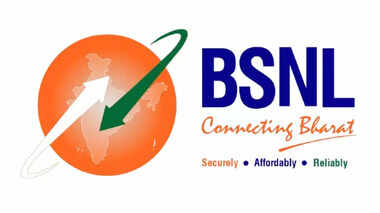
- 23 Jun 2025
In News:
Bharat Sanchar Nigam Limited (BSNL) announced in Hyderabad, the soft launch of BSNL Quantum 5G FWA. This indigenous, SIM-less fixed-wireless-access solution delivers fibre-like speeds over 5G radio.
What is Quantum 5G FWA?
Quantum 5G FWA (Fixed Wireless Access) is an indigenous, SIM-less, 5G broadband solution that offers fibre-like speeds using wireless 5G radio—eliminating the need for traditional fibre connections.
Key Technical Features:
- SIM-less Connectivity: Uses BSNL’s Direct-to-Device (D2D) platform; Customer Premises Equipment (CPE) auto-authenticates without a SIM card.
- Fully Indigenous Tech Stack: Core network, RAN (Radio Access Network), and CPE developed under the Atmanirbhar Bharat initiative.
- High-Speed Performance:
- Download: Up to 980 Mbps
- Upload: 140 Mbps
- Latency: Under 10 milliseconds
- Plug-and-Play Installation:
- No trenching or fibre required.
- Covers over 85% of Hyderabad households via existing BSNL tower grid.
Significance of the Launch
- India’s First SIM-less 5G FWA solution.
- Marks BSNL as a 5G pioneer in offering 100% made-in-India wireless broadband.
- Showcases Indian R&D strength and self-reliance in advanced telecom under Digital India and Atmanirbhar Bharat.
- Ideal for UHD streaming, cloud gaming, remote work, and smart home services.
- Bridges the digital divide by enabling affordable gigabit-speed internet, even in rural and underserved regions.
Roadmap and Future Expansion
- Pilot Rollouts (By September 2025): Target Cities: Bengaluru, Pondicherry, Visakhapatnam, Pune, Gwalior, Chandigarh
- Tariff Plans:
- ?999/month for 100 Mbps
- ?1499/month for 300 Mbps
- Enterprise Applications: Will support network-sliced, SLA-backed links for MSMEs and smart manufacturing through edge-cloud architecture.
World Investment Report 2025

- 23 Jun 2025
In News:
The World Investment Report 2025, released recently by the United Nations Conference on Trade and Development (UNCTAD), highlights critical trends in global foreign direct investment (FDI).
Key Details:
Purpose of the Report:
- To track global trends in Foreign Direct Investment (FDI) and international production.
- To guide policymakers and investors on aligning investment flows with sustainable development objectives.
- To monitor progress on the Sustainable Development Goals (SDGs) and Global Digital Compact through investment trends.
Major Global Trends Identified (2024 Data)
- Overall Decline in Global FDI: FDI declined by 11%, reaching $1.5 trillion, marking the second consecutive year of contraction.
- Digital Economy as a Growth Engine
- Value of digital-sector projects doubled, becoming the primary driver of FDI growth.
- Key growth areas: AI, data centres, cloud computing, semiconductors.
- SDG Investment Crisis: Investment in critical SDG sectors such as renewable energy, water, sanitation, and agrifood fell by 25–33%.
- Regional Divergence
- Africa: FDI surged by 75%, led by Egypt’s $35 billion megaproject.
- ASEAN: Moderate growth of 10% driven by realigned supply chains.
- China: FDI inflows fell by 29%, affected by geopolitical tensions.
- South America: Registered an 18% drop in FDI.
- Collapse in Infrastructure Finance: International Project Finance (IPF) declined by 26%, deepening the infrastructure gap in least developed countries (LDCs).
- Geopolitical Fragmentation
- Rising trade tensions, tariff barriers, and political risks are reshaping FDI flows.
- Emergence of near-shoring and regionalisation as firms relocate to reduce dependence on global supply chains.
Country-Specific Focus: India
- India received $28 billion in FDI inflows in 2024, retaining its rank among top global destinations.
- Key sectors: semiconductors, EV components, digital infrastructure.
- India ranked among top 5 global hubs for greenfield projects.
- Outbound FDI by Indian firms increased by 20%, showing strong outward investment intent.
Assessment of Positive and Negative Trends
Positive Trends:
- Digital FDI Boom: Reflects a global pivot towards a knowledge and tech-driven economy.
- Africa’s Rise: Significant confidence in Africa despite global slowdown.
- Resilient ASEAN & India: Benefitting from global supply chain realignment.
Negative Trends:
- Fall in SDG-Aligned Investments: Threatens progress towards global sustainability targets.
- Infrastructure Finance Crisis: Severely affects LDCs dependent on project finance.
- China’s FDI Decline: Raises concerns about the future of global investment flows amid US-China tensions.
- Geopolitical Fragmentation: Reduces investor appetite for long-term cross-border projects.
Strategic Recommendations
- Strengthen Digital Infrastructure: Scale up investments in broadband, cloud infrastructure, and data hubs through public-private partnerships.
- Bridge SDG Investment Gap: Mobilize development banks, sovereign wealth funds, and climate finance to support SDG sectors.
- Policy Coherence: Align digital, industrial, and sustainability policies at national and international levels.
- De-risking Private Investment: Promote blended finance models to attract global capital to emerging markets.
- Enhance Innovation Governance: Improve IPR frameworks and cross-border data regulations to boost investor confidence in innovation sectors.
- Boost Regional Integration: Strengthen regional trade agreements and infrastructure connectivity to counter global fragmentation.
e-Rakt Kosh

- 22 Jun 2025
In News:
The Ministry of Health and Family Welfare is set to integrate India’s Rare Donor Registry with e-Rakt Kosh, a centralized national blood bank management platform under the National Health Mission (NHM). This move aims to improve access to rare blood types, enhance donor coordination, and save lives by ensuring timely availability of rare blood groups.
About the Integration
- e-Rakt Kosh: A digital platform developed under NHM for real-time information on blood availability, donation camps, and blood bank locations.
- Rare Donor Registry of India (RDRI): Developed by the ICMR–National Institute of Immunohaematology (NIIH) with four partner institutes. Maintains a database of 4,000 carefully screened rare blood donors, tested for over 300 rare blood markers.
- Objective: To provide a centralized, accessible system for patients needing rare blood and to assist blood banks in managing inventory and donors efficiently.
Key Features and Benefits
- Life-saving Access: Enables patients and hospitals to locate rare blood types like Bombay blood group, Rh-null, and P-null efficiently.
- Safe Transfusions: Helps match blood for patients with multiple antigen deficiencies, common in disorders like thalassemia and sickle cell disease, thus reducing transfusion complications.
- Technological Advancements:
- Use of Multiplex PCR-based DNA testing for rapid identification of rare blood groups.
- Development of a customized blood screening kit tailored for Indian patients.
- Donor Engagement: Aims to ensure a steady, motivated pool of rare blood donors who remain connected to blood banks.
ICMR’s Parallel Work on Hemoglobinopathies and Rare Diseases
- Point-of-Care (POC) Tests Developed For:
- Sickle Cell Disease
- Hemophilia A
- Von Willebrand Disease
- Impact of Innovation:
- Sickle Cell Test Kits cost reduced from ?350 to under ?50 per test through Health Technology Assessment (HTA) led by DHR, ICMR–CRMCH, and NIIH.
- Estimated savings: ?1,857 crore for the government.
- New rapid testing device enables diagnosis even at PHC level.
- International Interest: World Federation for Hemophilia has shown interest in procuring India-developed diagnostic kits for global deployment.
- Commercialization: Technology transferred to Bhat Biotech, which launched the product under the brand Bio-Scan in August 2023.
Significance
- Enhances India’s healthcare infrastructure and emergency response for rare blood groups.
- Aligns with the goals of Universal Health Coverage (UHC) and Atmanirbhar Bharat in the field of indigenous diagnostics.
- Showcases India’s growing biotech innovation ecosystem with both national and international relevance.
11th International Day of Yoga (IDY) – 2025
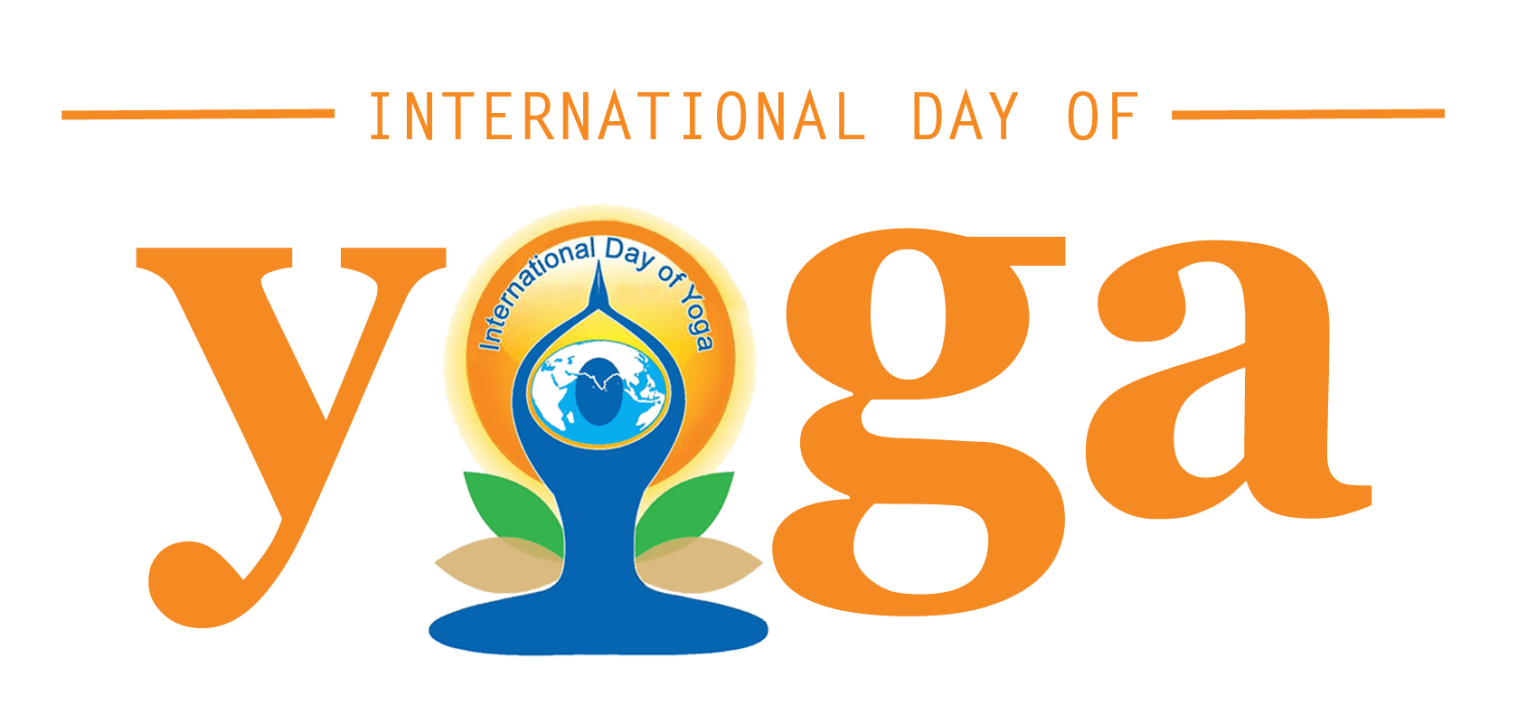
- 22 Jun 2025
In News:
The 11th International Day of Yoga (IDY) will be observed on June 21, 2025, under the theme “Yoga for One Earth, One Health”. The theme emphasizes the connection between individual well-being and planetary health, aligned with India’s G20 vision of “One Earth, One Family, One Future.”
About the International Day of Yoga
- What it is: An annual global observance promoting yoga as a holistic health practice for physical, mental, and emotional well-being in harmony with nature.
- Adoption: Declared by the United Nations General Assembly (UNGA) through Resolution 69/131 on December 11, 2014, following India's proposal.
- First Observed: June 21, 2015
- Nodal Ministry: Ministry of AYUSH, Government of India
Theme for 2025: “Yoga for One Earth, One Health”
- Focuses on the interdependence between human health and environmental sustainability.
- Reinforces yoga’s role in achieving sustainable lifestyles and climate consciousness.
Key Objectives
- Promote mind-body balance, emotional stability, and overall well-being through yoga.
- Raise global awareness on yoga’s health and ecological benefits.
- Encourage adoption of yoga as part of daily life for sustainable living.
- Strengthen India’s soft power and global leadership in wellness traditions.
Highlights and Participation
- Global Reach: Adopted by 175 UN Member States. Global participation has grown from 9 crore in 2018 to 24.53 crore in 2024.
- Mass Events: Celebrated across countries with support from state governments, Indian embassies, UN bodies, and civil society.
- Inclusive Message: Yoga Day’s logo and themes emphasize unity, well-being, and coexistence with nature.
Significance
- Public Health Tool: Promotes a low-cost, accessible, preventive healthcare practice.
- Sustainability Alignment: Advocates for climate-sensitive living and ecological harmony.
- Cultural Diplomacy: Enhances India’s global stature as the birthplace of yoga and a leader in wellness diplomacy.
- Soft Power Projection: Reflects India’s cultural values and promotes its influence through global well-being initiatives.
QS World University Rankings 2026
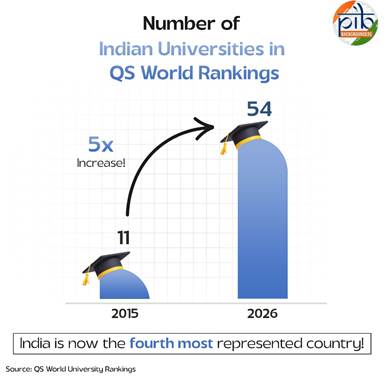
- 22 Jun 2025
In News:
India has recorded its highest representation to date in the QS World University Rankings 2026, with 54 institutions featured—up from 11 in 2015. This marks a five-fold increase in a decade, making India the fourth most represented country, after the US, UK, and China.
Key Highlights
- Total Indian Institutions Ranked (2026): 54
- New Entrants from India: 8
- Top-performing Indian Institution: IIT Delhi (Rank 123)
- Fastest Rising Indian Institution: IIT Madras, up 47 places (from 227 in 2025 to 180 in 2026)
- Indian Institutes of Technology (IITs) Featured: 12
- Debut Institutions in 2026:
- IIT Gandhinagar
- Lovely Professional University (LPU)
- Kalinga Institute of Industrial Technology (KIIT)
- Ashoka University
- Galgotias University
- Shiv Nadar University
- CHRIST (Deemed to be University), Bengaluru
- Manav Rachna International Institute of Research and Studies (MRIIRS)
Significant Trends and Insights
- Global Standing:
- India now ranks 4th globally in terms of number of institutions in the QS Rankings.
- Only the US (192), UK (90), and China (72) rank higher.
- Improvements and Recognition:
- 48% of India’s ranked institutions have improved their positions over last year.
- 6 institutions are in the global top 250.
- 5 Indian universities are among the top 100 globally for Employer Reputation, showing high industry trust.
- 8 institutions rank in the top 100 for Citations per Faculty, with an average score of 43.7—higher than the UK, US, and Germany.
- Diverse Representation:
- Includes central universities, deemed-to-be universities, technical institutions, and private universities, reflecting a balanced and diversified higher education landscape.
QS Ranking Methodology: Key Indicators
Performance Lens Weightage Indicators Weightage
Research & Discovery 50% Academic Reputation 30%
Citations per Faculty 20%
Employability & Outcomes 20% Employer Reputation 15%
Employment Outcomes 5%
Global Engagement 15% International Faculty Ratio 5%
International Research Network 5%
International Student Ratio 5%
Learning Experience 10% Faculty-Student Ratio 10%
Sustainability 5% Sustainability 5%
- New Indicator in 2026: International Student Diversity (tracks number and diversity of international students; non-weighted this cycle)
Significance for India
- The consistent rise highlights the impact of reforms under the National Education Policy (NEP) 2020, with greater emphasis on research, global collaboration, academic excellence, and employer integration.
- India’s progress makes it the fastest-rising G20 nation in QS rankings.
- Reflects increasing global trust and recognition of India’s higher education system.
Revised Green India Mission (GIM)
- 22 Jun 2025
In News:
Recently, the Ministry of Environment, Forest and Climate Change released the revised roadmap for the National Mission for a Green India (GIM). The updated strategy focuses on restoring degraded ecosystems, enhancing forest cover, and addressing climate impacts, especially in vulnerable landscapes like the Aravallis, Western Ghats, Himalayas, and mangroves.
About Green India Mission (GIM)
- Launched in: 2014
- Under: National Action Plan on Climate Change (NAPCC)
- Nodal Ministry: Ministry of Environment, Forest and Climate Change (MoEFCC)
- Core Objectives:
- Increase forest/tree cover by 5 million hectares.
- Improve the quality of forest cover on another 5 million hectares.
- Restore degraded ecosystems and enhance biodiversity.
- Improve the livelihoods of forest-dependent communities.
Achievements So Far
- Afforestation Activities: 11.22 million hectares covered (2015–16 to 2020–21) through central and state schemes.
- Funding: ?624.71 crore released (2019–24) to 18 states; ?575.55 crore utilized.
- Target Areas: Selected based on ecological vulnerability, sequestration potential, and restoration needs.
Key Features of the Revised Roadmap
- Landscape-Specific Restoration:
- Prioritizes Aravalli ranges, Western Ghats, Himalayas, and mangrove ecosystems.
- Emphasizes regionally adapted best practices for ecosystem restoration.
- Integration with Aravalli Green Wall Project:
- Aims to combat desertification and sandstorm risks in northern India.
- Initial restoration planned across 8 lakh hectares in 29 districts of 4 states.
- Estimated cost: ?16,053 crore.
- Aims to develop a 5 km buffer zone covering 6.45 million hectares around the Aravallis.
- Western Ghats Focus:
- Tackling deforestation, illegal mining, and degradation.
- Measures include afforestation, groundwater recharge, and mining site restoration.
Combating Land Degradation and Climate Change
- Land Degradation (2018–19): Affected 97.85 million hectares (~1/3rd of India’s land), per ISRO data.
- India’s Climate Targets (2030):
- Create an additional carbon sink of 2.5–3 billion tonnes of CO? equivalent via forest/tree cover.
- Restore 26 million hectares of degraded land.
- Carbon Sequestration Potential (FSI Estimates):
- Restoration of open forests can sequester 1.89 billion tonnes of CO? over 15 million hectares.
- With intensified afforestation and aligned schemes, forest cover could reach 24.7 million hectares—achieving a carbon sink of 3.39 billion tonnes CO? equivalent by 2030.
Significance of the Revised Mission
- Aligns with India’s NDCs under the Paris Agreement.
- Supports goals under UNCCD and UNFCCC.
- Helps mitigate climate change impacts by creating natural buffers and carbon sinks.
- Promotes ecological sustainability, biodiversity conservation, and community livelihood enhancement.
Bhashini

- 22 Jun 2025
In News:
The Ministry of Panchayati Raj (MoPR) has signed a Memorandum of Understanding (MoU) with Bhashini, the National Language Translation Mission (NLTM), to integrate AI-enabled multilingual tools into rural e-governance platforms.
About Bhashini
- Developed by: Ministry of Electronics and Information Technology (MeitY)
- Purpose: Acts as a digital public infrastructure for real-time, AI-powered translation across Indian languages.
Objective of the MoU
- To build an inclusive, multilingual e-governance ecosystem for Panchayati Raj Institutions (PRIs).
- To bridge language barriers in rural governance and foster participatory democracy.
Key Features of the Initiative
- AI-Driven Language Translation: Offers real-time speech-to-text and text-to-text translation in major Indian languages.
- Platform Integration: Bhashini tools to be integrated with MoPR’s digital platforms like eGramSwaraj, ensuring multilingual access to rural governance services.
- Citizen-Centric Approach: Enables rural citizens to interact with digital governance platforms in their native language, enhancing accessibility and inclusion.
- Promotes Digital Inclusion: Supports rural digital literacy by making digital interfaces linguistically accessible.
- Enhances Transparency and Trust: Facilitates better information dissemination, increasing trust and engagement in local self-governance.
Significance
- Aligns with Digital India goals.
- Empowers Gram Panchayats by ensuring language is not a barrier to governance.
- Sets a precedent for AI-driven, citizen-centric governance reforms.
Predatory Pricing and Competition Law Reform

- 21 Jun 2025
In News:
- The Competition Commission of India (CCI) has recently proposed the Determination of Cost of Production (DCOP) Regulations, 2025 to replace the older 2009 norms. A major reform introduced is the use of Average Total Cost (ATC) as a key metric to determine pricing in predatory pricing cases, while excluding ‘market value’ as a cost measure in such assessments.
- This development is significant in the context of India's broader competition law landscape, where concerns around market dominance and fair pricing are central to protecting consumer interest and ensuring a level playing field.
Understanding Predatory Pricing
- Predatory pricing refers to the practice of setting prices below cost to eliminate competitors from the market. Although consumers may benefit from low prices in the short term, the long-term consequence is often the emergence of monopolies, leading to higher prices and fewer choices. Due to its anti-competitive nature, this pricing strategy is banned in most jurisdictions globally.
- In India, predatory pricing is classified under ‘abuse of dominance’ as per the Competition Act, 2002, specifically under the broader category of unfair pricing or exclusionary conduct.
Legal Criteria for Establishing Predatory Pricing in India
For any allegation of predatory pricing to hold, three conditions must be satisfied:
- Dominance in the Market: The firm accused must hold a dominant position in the relevant market.
- Pricing Below Cost: The firm must have engaged in below-cost pricing, though defining “cost” has remained contentious. This raises the question—should cost mean fixed, variable, or total?
- Fixed costs are those independent of output (e.g., rent, IT systems).
- Variable costs change with production (e.g., raw materials, logistics).
- Total cost is the sum of fixed and variable costs.
- Intent to Eliminate Competition: There must be clear evidence that the pricing strategy was intended to exclude competitors from the market.
While dominance is usually straightforward to assess, determining what constitutes “cost” and proving anti-competitive intent remain legally complex.
Regulatory Evolution: From AVC to ATC
- Under existing regulations, the CCI had discretion to choose the cost metric on a case-by-case basis. The norm was to justify the use of any metric other than Average Variable Cost (AVC).
- A notable application was in the MCX vs. NSE case, where the Commission adopted the Long Run Average Incremental Cost (LRAIC) due to the network externalities inherent in stock exchange services, justifying inclusion of fixed costs.
- The new 2025 draft regulations now explicitly include Average Total Cost (ATC) as a valid benchmark for cost evaluation. ATC is widely accepted in industrial economics as a realistic representation of firm cost efficiency. By allowing ATC as a formal benchmark and excluding ‘market value’, the CCI aims to bring clarity and consistency in below-cost pricing investigations.
Why this Reform Matters
This proposed change holds importance for several reasons:
- It allows for a more holistic and realistic cost assessment, especially in industries where fixed costs form a significant part of the cost structure.
- It improves regulatory certainty and empowers the CCI to address anti-competitive practices in both legacy sectors (e.g., oil & gas) and emerging sectors (e.g., artificial intelligence and digital platforms).
- The reform is crucial at a time when the CCI’s budget has been declining year-on-year, limiting its enforcement capability. Simplified legal frameworks can enhance effectiveness without overburdening institutional resources.
Strengthening Inclusive Education for Children with Disabilities in India

- 21 Jun 2025
In News:
In a major step towards inclusive education, the Government of India signed a tripartite Memorandum of Understanding (MoU) in 2025 between the Department of Empowerment of Persons with Disabilities (DEPwD), National Institute of Open Schooling (NIOS), and National Council of Educational Research and Training (NCERT). The MoU aims to enhance curriculum reform, institutional coordination, and accessibility for children with disabilities across India’s education system.
What is Inclusive Education?
Inclusive education refers to a model where children with and without disabilities learn together in mainstream classrooms. It is supported by adapted curricula, accessible infrastructure, and individualised support mechanisms. The Rights of Persons with Disabilities (RPWD) Act, 2016 legally mandates inclusive education environments in India.
Why Inclusive Education Matters
Inclusive education is not merely a policy choice but a constitutional, social, and developmental imperative:
- Right to Education: Under Article 21A of the Constitution and the RTE Act, 2009, every child aged 6–14 has the right to free and compulsory education. This includes children with special needs (CWSN).
- Equity and Access: Reports by UNESCO highlight that 29 million children are out of school in South Asia, many of them with disabilities. Ensuring their inclusion addresses systemic exclusion.
- Social Transformation: Inclusive classrooms reduce stigma, promote empathy, and facilitate social acceptance of persons with disabilities.
- Human Capital Development: Educating CWSN enhances their ability to participate in the economy, contributing to innovation, productivity, and nation-building.
- Global Commitments: India has ratified the UN Convention on the Rights of Persons with Disabilities (CRPD, 2007) and is committed to SDG 4, which seeks inclusive and equitable quality education for all by 2030. The National Education Policy (NEP) 2020 also stresses disability inclusion at all education levels.
Key Data Points Highlighting the Need for Intervention
- According to the 2011 Census, around 7% of Indian children (0–19 years) have disabilities. However, data from UDISE+ 2019–20 reveals that less than 1% of children enrolled at the primary level are children with disabilities.
- In 2018–19, around 21 lakh CWSN were covered under Samagra Shiksha, supported by only 27,774 special/resource teachers across the country. This highlights the urgent need for both greater coverage and trained human resources.
Government Initiatives Promoting Inclusive Education
- The 2025 MoU between DEPwD, NIOS, and NCERT is aimed at reforming the curriculum to accommodate diverse learners. It also recognises special schools run under the Deendayal Disabled Rehabilitation Scheme (DDRS) as SAIEDs (Schools for Accessible and Inclusive Education for Disabled), expanding academic options for CWSN.
- The National Education Policy 2020 mandates the integration of children with disabilities in regular classrooms and promotes universal access and equity.
- Under Samagra Shiksha, the government provides financial support of ?3,500 per CWSN annually. Additional provisions include stipends for girls (up to Class XII), appointment of special educators, resource rooms, and home-based education for children with severe disabilities.
- NCERT’s Barkha Series, based on the Universal Design for Learning (UDL) framework, offers accessible reading materials in both print and digital formats, tailored to the diverse needs of learners.
- The RPWD Act 2016 mandates the creation of inclusive learning environments, with accessible buildings, assistive devices, and necessary support services.
UN Oceans Conference 2025
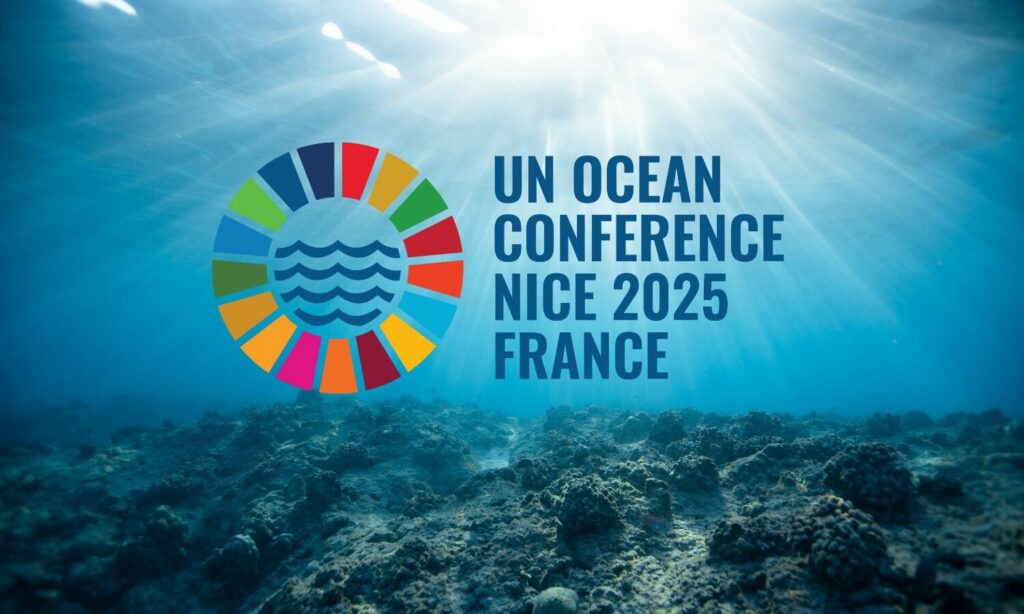
- 21 Jun 2025
In News:
The third United Nations Oceans Conference (UNOC) was recently held in France, witnessing major developments in international marine conservation. One of the most significant outcomes was the near-finalisation of the Biodiversity Beyond National Jurisdiction (BBNJ) agreement, also referred to as the High Seas Treaty.
As of now, 56 countries have ratified the treaty out of the required 60, bringing it close to the threshold for becoming legally binding. Notably, India and the United States have not yet ratified the agreement, although India has officially stated it is in the process of doing so.
About the BBNJ Treaty
- The BBNJ Treaty is a legally binding agreement developed under the framework of the United Nations Convention on the Law of the Sea (UNCLOS).
- Its aim is to regulate the use and protection of biodiversity in areas of the ocean that lie beyond national jurisdictions, also known as the high seas.
- The core objectives of the BBNJ Treaty include the creation of marine protected areas (MPAs) in international waters, regulation of marine genetic resources, enforcement of environmental impact assessments (EIAs) for activities in these regions, and capacity-building and technology transfer to support developing countries.
- The treaty is crucial because the high seas cover about 64% of the ocean’s surface and are largely unregulated.
- The BBNJ aligns with the Convention on Biological Diversity (CBD) target of conserving 30% of marine and coastal areas by 2030. Once the treaty secures the required number of 60 ratifications, it will enter into force after a 120-day waiting period. This will pave the way for the first Conference of Parties (COP) under the BBNJ to be held by late 2026.
Challenges to Implementation
- A major hurdle to the implementation of the BBNJ is the equitable sharing of benefits from marine genetic resources found in the high seas. These resources include unique life forms from deep-sea ecosystems that could have commercial applications in fields like pharmaceuticals and biotechnology.
- Since the high seas are global commons and not owned by any single nation, there is no clear consensus on how benefits should be shared.
- Environmental groups have also raised concerns that without a strong ban on resource extraction, the treaty may fall short of its conservation goals and could lead to unchecked exploitation of oceanic biodiversity.
Key Outcomes and Commitments from UNOC 2025
While the treaty itself is still awaiting full ratification, the conference saw a number of voluntary national and institutional commitments toward marine protection and sustainable ocean governance:
- The European Commission pledged €1 billion to support ocean conservation, marine science, and sustainable fisheries.
- French Polynesia committed to creating the world’s largest marine protected area, covering approximately five million square kilometres, equivalent to its entire exclusive economic zone (EEZ).
- New Zealand announced a contribution of $52 million to enhance ocean governance, science, and management in the Pacific Islands region.
- Germany launched an immediate action programme worth €100 million for the recovery and clearance of legacy munitions in the Baltic and North Seas.
- A coalition of 37 countries, led by Panama and Canada, initiated the High Ambition Coalition for a Quiet Ocean, the first global initiative to address ocean noise pollution.
- Italy committed €6.5 million to strengthen surveillance by the Coast Guard in marine protected areas and around oil platforms.
- Canada contributed $9 million to the Ocean Risk and Resilience Action Alliance, aiming to help Small Island Developing States (SIDS) and coastal countries build resilience against climate change using nature-based solutions.
- Spain pledged to establish five new marine protected areas, increasing its protected marine territory to 25%.
- A group of UN agencies introduced the One Ocean Finance initiative, which aims to mobilize investment from blue economy sectors to fund ocean sustainability.
Operation Sindhu
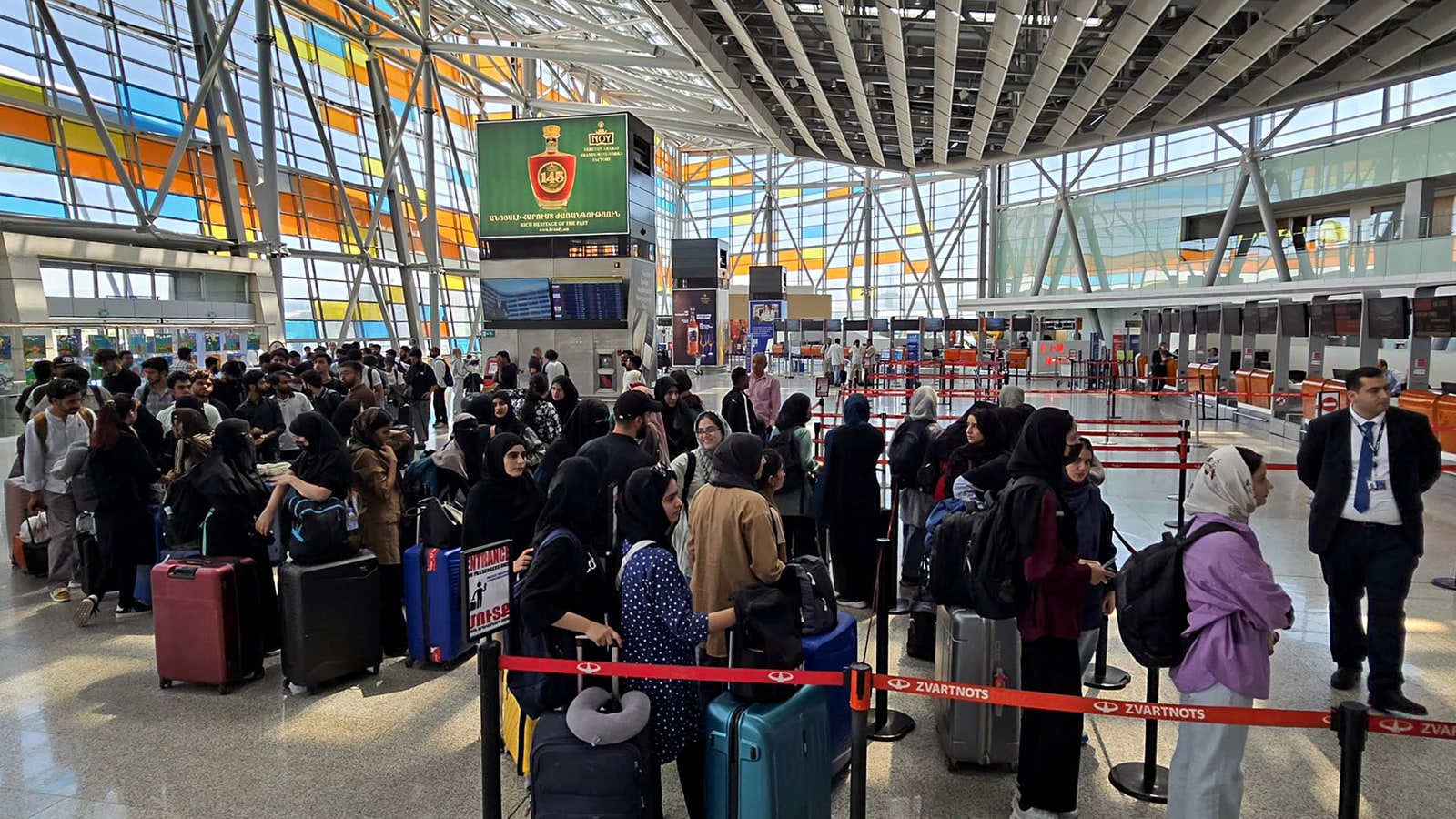
- 21 Jun 2025
In News:
As tensions escalate in West Asia due to the ongoing Iran-Israel conflict, the Government of India has launched Operation Sindhu to evacuate Indian nationals, particularly students, stranded in conflict-affected regions of Iran.
- The first flight under Operation Sindhu, carrying 110 Indian students, successfully landed in New Delhi, marking the beginning of the evacuation process.
What is Operation Sindhu?
Operation Sindhu is a government-led evacuation mission launched in 2025 to ensure the safe repatriation of Indian citizens from war-hit Iran.
- Launched by: Ministry of External Affairs (MEA), Government of India
- Assisted by: Indian Embassies in Iran and Armenia
Objectives:
- To safely evacuate Indian citizens, particularly students, from volatile zones in Iran.
- To coordinate safe land-based exit routes through Armenia, due to restricted or dangerous air routes over Iran.
Key Features of the Operation:
Feature Details
Evacuation Route Northern Iran → Yerevan (Armenia) → New Delhi
Monitoring Real-time updates and continuous monitoring by Indian missions
Coordination Close coordination with governments of Iran and Armenia
Control Room 24/7 MEA Control Room operational in New Delhi
India’s Major Air Evacuation Missions (Chronological Overview):
Mission Name Year Objective
Vande Bharat Mission 2020 Evacuation of Indians stranded abroad during the COVID-19 pandemic
Operation Devi Shakti 2021 Evacuation from Afghanistan after the Taliban takeover
Operation Ganga 2022 Evacuation from Ukraine amid Russia-Ukraine war
Operation Kaveri 2023 Rescue of Indian nationals from conflict-hit Sudan
Operation Ajay 2023 Repatriation of Indians from Israel amid regional conflict
Operation Sindhu 2025 Ongoing evacuation from Iran amid Iran–Israel escalation
Significance for India
- Diaspora Safety: Reinforces India’s commitment to protecting its citizens abroad.
- Diplomatic Efficiency: Reflects India’s growing capabilities in executing rapid and complex evacuation logistics in volatile geopolitical environments.
- Soft Power and Foreign Policy: Enhances India’s global image as a responsible nation ensuring citizen welfare, even beyond borders.
Fattah Hypersonic Missile
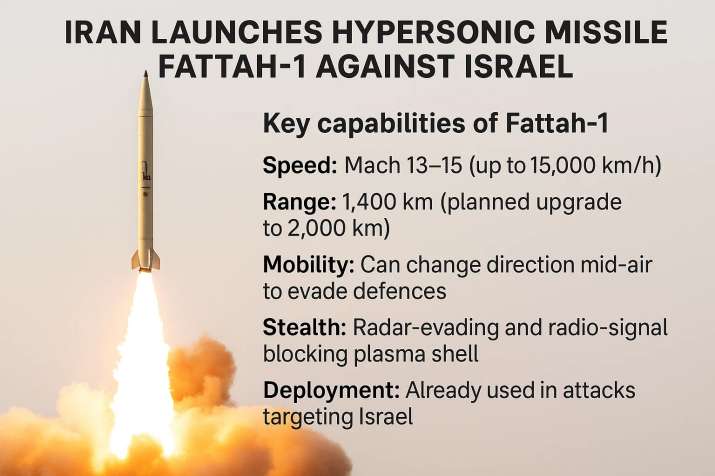
- 21 Jun 2025
In News:
In light of intensifying hostilities between Iran and Israel, Iran has deployed its advanced Fattah hypersonic ballistic missile, marking a significant shift in regional military capabilities and raising concerns over existing air defence systems such as Israel’s Iron Dome.
About Fattah Hypersonic Missile
- Developed by: Aerospace Force of the Islamic Revolutionary Guard Corps (IRGC), Iran
- Unveiled: November 2022 (on the 11th death anniversary of missile scientist Hassan Tehrani Moghaddam)
- Inducted: 2023
- Name Meaning: “Fattah” translates to “victor” or “conqueror”
Key Capabilities:
Feature Specification
Speed Mach 13–15 (approx. 15,000 km/h)
Range 1,400 km (planned upgrade to 2,000 km)
Mobility Capable of mid-air directional changes
Stealth Forms a plasma shield that blinds radar & blocks radio signals
Deployment Used in attacks against Israeli territory
- A more advanced version, Fattah-2, with a range of 1,500 km, is reportedly under development.
Strategic Significance
- The missile’s ability to evade modern air defence systems—such as Iron Dome and David’s Sling—makes it a potential game-changer.
- Iran claims Fattah is capable of operating within the upper atmosphere with unpredictable trajectory, making interception extremely difficult.
- This hypersonic manoeuvrability marks a leap over traditional ballistic missiles that follow a predictable parabolic trajectory.
Comparative Global Context
Iran claims to be the fourth country globally to possess operational hypersonic missiles, after:
- Russia
- China
- India
Other nations like the USA and North Korea are developing or testing hypersonic systems but have not fielded them in combat as Iran reportedly has.
Operational History
- October 2024: Fattah missiles were reportedly used by Iran in a prior attack on Israeli targets.
- 2025 Escalation: The missile was deployed during “Operation Honest Promise 3,” marking the 11th wave of retaliatory attacks by Iran on Israeli territory.
Iran’s Broader Ballistic Missile Arsenal
In addition to Fattah, Iran possesses a wide range of short-to-long range missiles, including:
- Fateh Series: Short-range solid-fuel missiles (Fateh-110, Fateh-313)
- Zolfaghar and Qasem: Extended versions of Fateh series
- Emad: Long-range liquid-fuel missile with 1,700 km range
- Sejjil: Solid-fuel missile with 2,500 km range, speeds up to 17,000 km/h
- Others: Kheibar, Ghadr-110, Fajr-3, Shahab-3, Ashoura, Haj Qasem, Basir
Implications for India and the Region
- Regional Arms Race: Iran’s hypersonic capability may trigger further military build-up in the Middle East.
- India’s Position: As one of the few nations with hypersonic R&D, India must monitor evolving doctrines and maintain strategic balance.
- Global Security: The usage of such missiles in conflict zones raises concerns over escalation, proliferation, and undermining of existing missile defence systems.
FASTag Annual Pass
- 20 Jun 2025
In News:
Recently, Union Transport Minister Nitin Gadkari announced the launch of a FASTag-based Annual Pass, offering a simplified and cost-effective tolling solution for private vehicle users on National Highways. The initiative is set to be rolled out from August 15, 2025, and aims to improve traffic flow, reduce toll disputes, and enhance ease of travel.
What is the FASTag Annual Pass?
- Cost: ?3,000
- Validity: 1 year from activation or 200 highway trips (whichever comes earlier)
- Eligibility: Only for non-commercial private vehicles (cars, jeeps, vans)
- Coverage: Valid across all National Highways in India
Key Objectives
- Hassle-free highway travel by eliminating repeated toll payments
- Reduce congestion and waiting time at toll plazas
- Simplify toll management with a one-time, prepaid model
- Address concerns regarding toll plazas located in close proximity (within 60 km)
How It Works
- Integrated with the existing FASTag system (uses RFID technology)
- Annual pass will be linked to the user's FASTag account
- Activation and renewal through:
- Rajmarg Yatra App
- NHAI website
- Ministry of Road Transport & Highways (MoRTH) website
Part of a Broader Reform in Tolling
The Annual Pass complements ongoing toll reforms:
- Introduction of ANPR-FASTag hybrid tolling system:
- Automatic Number Plate Recognition (ANPR) cameras
- RFID-based FASTag readers
- Enables barrier-less tolling, where vehicles are charged without stopping
- Non-compliance may result in:
- e-notices
- Penalties, including FASTag suspension or VAHAN database sanctions
Gharial Conservation

- 20 Jun 2025
In News:
On World Crocodile Day (June 17, 2025), Etawah district in Uttar Pradesh marked the 50th anniversary of India’s pioneering Gharial Conservation Programme, commemorating five decades of sustained efforts to protect the endangered gharial (Gavialis gangeticus) along the Chambal River.
About the Gharial Conservation Programme
- Launched in: 1975
- Initiated by: Forest Department of Uttar Pradesh and Society for Conservation of Nature (SCON)
- Supported by: UNDP, FAO, and Government of India
- Location: Primarily focused on Chambal River in Etawah district, Uttar Pradesh
- Breeding Facility: Kukrail Gharial Rehabilitation Centre, Lucknow
Why Gharial Conservation Matters
- Species: Gharial (Gavialis gangeticus) — endemic, freshwater crocodilian
- Status: Critically Endangered (IUCN Red List)
- Habitat: Prefers deep, fast-flowing rivers with sandy banks and minimal human interference
- Threats: Habitat destruction, sand mining, illegal fishing, entanglement in nets, and declining fish stocks
Programme Objectives
- Protect wild gharial populations in natural river habitats.
- Enhance population through captive breeding and release.
- Study habitat biology and gharial behaviour to inform scientific conservation.
- Promote coexistence between gharials and local fishing communities.
- Create awareness and engage local populations in conservation.
Key Features of the Programme
- Egg Collection: Gharial eggs are safely collected from natural nests on riverbanks.
- Artificial Incubation: Maintained under controlled temperature and humidity to improve hatching success.
- Captive Rearing: Hatchlings are reared for 3–5 years at Kukrail Centre until they are strong enough for survival in the wild.
- Release Strategy: Tagged juveniles are released in protected stretches of the Chambal River.
- Community Involvement: Local fishermen and villagers are involved in conservation-linked livelihoods to reduce human-wildlife conflict.
Impact and Legacy (1975–2025)
- One of India’s earliest species-specific conservation programmes.
- Created a successful model of “rear-and-release” conservation.
- Helped stabilize the gharial population in Chambal, now one of the last strongholds for the species.
- Promoted community-based conservation and scientific habitat management.
Sakura Science High School Programme 2025

- 20 Jun 2025
In News:
- In June 2025, 20 Indian school students were officially flagged off by Shri Sanjay Kumar, Secretary, Department of School Education & Literacy (DoSEL), to participate in the prestigious Sakura Science High School Programme 2025 in Japan.
- The initiative reflects India's growing focus on international educational exposure, scientific collaboration, and experiential learning, in alignment with the vision of the National Education Policy (NEP) 2020.
About the Sakura Science Programme
- Launched by: Japan Science and Technology Agency (JST) in 2014.
- Objective: To promote science, technology, and innovation through Asia-wide youth exchanges.
- India’s Participation: Since 2016; over 619 students and 91 supervisors have participated till 2025.
- Participants (2025 batch):
- 20 students (7 boys, 13 girls) from Jawahar Navodaya Vidyalayas and government schools in Andaman & Nicobar Islands, Ladakh, Mizoram, Nagaland, and Tripura.
- Accompanied by 2 supervisors.
- Programme duration: 15–21 June 2025.
- Participating countries (2025): India, Malaysia, Taiwan, and Ukraine.
Key Features of the Programme
- Hands-on Learning: Visits to advanced scientific labs, tech demonstration centres, and universities in Japan.
- Cultural Exposure: Insight into Japanese traditions, societal values, and innovation ecosystem.
- International Peer Exchange: Interaction with students from other Asian nations to foster global scientific thinking.
Relevance to NEP 2020
The NEP 2020 advocates experiential, holistic, and integrated learning. It highlights:
- The need for educational excursions to places of scientific, cultural, and technological relevance.
- Promoting international collaborations that broaden the intellectual horizons of learners.
- Encouraging innovation through interdisciplinary exposure and real-world learning.
The Sakura Programme complements NEP 2020’s goals by offering Indian students a unique platform to explore global advancements in STEM (Science, Technology, Engineering, and Mathematics) fields.
Strategic Importance
- Science Diplomacy: Strengthens Indo-Japanese relations in education and technology.
- Youth Empowerment: Builds future-ready, globally aware scientific talent.
- Inclusivity: Focuses on students from remote and underserved regions, aligning with India’s equity-focused educational reforms.
Global Drought Outlook 2025

- 20 Jun 2025
In News:
- The Organisation for Economic Co-operation and Development (OECD) has released the “Global Drought Outlook 2025”, presenting a stark warning about the increasing frequency, severity, and impact of droughts worldwide.
- The report, titled “Global Drought Outlook: Trends, Impacts and Policies to Adapt to a Drier World”, offers a comprehensive assessment of drought patterns, consequences, and adaptation strategies, making it crucial for policymakers and global environmental governance.
Understanding Drought:
Drought is defined as a hydrological imbalance, characterised by prolonged periods of “drier-than-normal” conditions that deplete soil moisture, surface water, and groundwater. The report identifies three main types:
- Meteorological Drought: Caused by significantly below-average rainfall over an extended period.
- Agricultural Drought: Occurs when soil moisture becomes insufficient for crops and vegetation.
- Hydrological Drought: Involves declining water levels in rivers, lakes, and aquifers, affecting supply for human and ecological needs.
Global Trends and Projections
- Drought-Affected Land: The share of global land experiencing drought has doubled since 1900, driven by climate change and unsustainable land use.
- Current Impact (2023): Nearly 48% of the world’s land experienced at least one month of extreme drought.
- Regional Hotspots: Western USA, South America, Europe, Africa, and Australia are increasingly vulnerable.
- Groundwater Stress: Around 62% of monitored aquifers show declining trends.
- Future Risk: At +4°C global warming, droughts could become 7 times more frequent and severe by 2100, posing systemic global threats to food, water, and economic security.
Multidimensional Impacts of Drought
Ecological:
- 37% of global soils have dried significantly since 1980.
- River and groundwater depletion are threatening biodiversity and ecosystem services.
Economic:
- Drought-related losses are increasing by 3–7.5% annually.
- Modern droughts are twice as costly as in 2000; costs may rise 35% by 2035.
- Agriculture is most affected: crop yields drop up to 22% in drought years.
- Drought causes a 40% drop in river-based trade and a 25% decline in hydropower output.
Social:
- Droughts account for 34% of disaster-related deaths, though only 6% of disasters are droughts.
- It is a major driver of food insecurity, internal displacement, and climate migration, especially in Sub-Saharan Africa.
- Political instability and conflict often correlate with drought-induced resource scarcity.
Adaptation and Mitigation Strategies
The OECD emphasizes a multi-sectoral approach to manage drought risks:
- Integrated Water Resource Management (IWRM):
- Balancing water use and renewal.
- Promoting efficient and equitable water allocation.
- Nature-based Solutions (NbS):
- Urban de-sealing to enhance groundwater recharge.
- Landscape restoration to improve water retention and ecosystem resilience.
- Sustainable Agriculture:
- Adoption of drought-resistant crops and micro-irrigation systems.
- Can reduce water use by up to 76%.
- Urban Planning: Permeable infrastructure restores aquifers (e.g., US examples show 780 million m³/year recovery).
- Early Warning Systems: Enhanced drought monitoring, forecasting, and risk mapping.
- Policy Integration: Embedding climate resilience into national water and land-use policies.
- Cross-Sector Coordination: Engaging sectors like agriculture, energy, transport, construction, and health.
- Economic Benefits: Every $1 invested in drought resilience yields $2–$10 in benefits.
Performance Grading Index (PGI) 2.0
- 20 Jun 2025
In News:
The Ministry of Education released the Performance Grading Index (PGI) 2.0 for the years 2022–23 and 2023–24, offering a comprehensive assessment of school education across States and Union Territories (UTs). This index, aligned with the National Education Policy (NEP) 2020 and Sustainable Development Goals (SDG 4), serves as a critical evidence-based framework for benchmarking educational performance in India.
About PGI 2.0
- Launched: 2017 (PGI 2.0 is the revised version)
- Published by: Ministry of Education, Government of India
- Purpose: Measures performance in school education using a data-driven approach
- Total Indicators: 73 across 6 domains
- Scoring: Out of 1000 points; graded into 10 performance bands:
- Daksh (951–1000) – Top
- Akanshi-3 (401–460) – Lowest
Domains Assessed
- Learning Outcomes and Quality
- Access to Education
- Infrastructure and Facilities
- Equity
- Governance Processes
- Teacher Education and Training
Key Highlights of PGI 2.0 (2022–24)
- Top Performer: Chandigarh with a score of 703, placed in the fifth band – Prachesta-1.
- Lowest Performer: Meghalaya, with 417 points, in the tenth and lowest band – Akanshi-3.
- No State/UT reached the top four bands (Daksh, Utkarsh, Ati Uttam, Uttam), indicating a national gap in quality education.
State-Wise Band Distribution
- Band 5 (Prachesta-1: 701–760): Chandigarh
- Band 7 (581–640): Punjab, Delhi, Gujarat, Odisha, Kerala, Haryana, Goa, Maharashtra, Rajasthan, and Dadra & Nagar Haveli & Daman & Diu
- Band 8 (521–580): 14 States/UTs
- Band 9 (461–520): 10 States/UTs
- Band 10 (Akanshi-3: 401–460): Meghalaya (only State in this band)
Performance by Domains
- Learning Outcomes: No State achieved the top four bands. Chandigarh, Punjab, and Puducherry performed relatively better (Prachesta-2).
- Access to Education: Odisha alone achieved the highest band (Daksh), while Bihar and Jharkhand showed notable progress.
- Infrastructure: Only Chandigarh featured in the third band (Ati Uttam), with Delhi and Dadra & Nagar Haveli in the next.
- Equity: All States placed in the top three bands, indicating relatively balanced access among social groups.
- Governance & Monitoring: Chandigarh excelled through digital governance and transparent fund utilization.
Significance for Policy and NEP 2020
- PGI 2.0 is pivotal in monitoring NEP 2020 implementation, especially for early-grade learning, infrastructure enhancement, equity, and governance.
- It identifies strengths and challenges, enabling targeted policy interventions.
- Despite infrastructure and access gains, quality of learning remains the most critical challenge.
PM-JANMAN and Dharti Aaba Initiatives
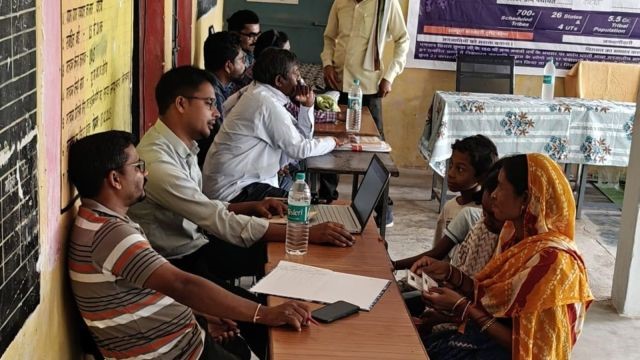
- 19 Jun 2025
In News:
- The Ministry of Tribal Affairs has launched a nationwide outreach campaign targeting over 500 districts and 1 lakh tribal-dominated villages and habitations.
- The campaign aims to ensure benefit saturation and last-mile delivery of welfare schemes under the Pradhan Mantri Janjati Adivasi Nyaya Maha Abhiyan (PM-JANMAN) and the Dharti Aaba Janjatiya Gram Utkarsh Abhiyan.
- This initiative is part of the ongoing Janjatiya Gaurav Varsh (Tribal Pride Year), a year-long celebration started on November 15, 2024 — the birth anniversary of Birsa Munda, a revered anti-colonial tribal icon.
Pradhan Mantri Janjati Adivasi Nyaya Maha Abhiyan (PM-JANMAN)
- Launched: 2023 on Janjatiya Gaurav Diwas
- Focus: Holistic development of Particularly Vulnerable Tribal Groups (PVTGs)
- Type: Includes both Central Sector and Centrally Sponsored Schemes
- Objectives:
- Safe housing (via PMAY)
- Clean drinking water
- Health, nutrition, and education access
- Road and telecom connectivity
- Electrification of unelectrified households
- Sustainable livelihood opportunities
- Time Frame: 3-year targeted implementation
- Vision: Supports Viksit Gaon, Viksit Bharat, and inclusive development with social justice
Dharti Aaba Janjatiya Gram Utkarsh Abhiyan
- Launched: October 2, 2024, by PM Modi in Jharkhand
- Named After: Birsa Munda, also known as Dharti Aaba (Father of the Earth)
- Aim: Transform tribal villages into centres of opportunity and dignity
- Approach:
- Multi-sectoral convergence with 17 line ministries
- 25 targeted interventions for integrated rural development
- Welfare activities include: hostel construction, rural electrification, livestock and fisheries support, housing under PMAY, etc.
- Budget Allocation (Union Budget 2025–26):
- Total: ?79,156 crore over 5 years
- Central Share: ?56,333 crore
- State Share: ?22,823 crore
Outreach Campaign (June 2025) Highlights
- Duration: Fortnight-long outreach starting June 15, 2025
- Coverage: 1 lakh tribal villages and habitations across 500+ districts
- Services at Doorstep:
- Aadhaar and Ayushman Bharat card enrollment
- Forest Rights Act (FRA) land title distribution
- Opening of pension and Jan Dhan accounts
- Goal: Awareness generation and saturation of benefits at block and hamlet levels
- Strategy: On-ground ‘benefit saturation camps’ to popularize uptake of the schemes
Significance
- Focus on PVTGs, who are the most marginalized among tribal communities
- Promotes digital inclusion, financial inclusion, and documentation access
- Demonstrates convergent governance through coordination across ministries
- Reinforces India’s tribal empowerment narrative and acknowledges historical contributions through Birsa Munda's legacy
‘Samarth’ Incubation Program

- 19 Jun 2025
In News:
The Centre for Development of Telematics (C-DOT), an autonomous R&D institution under the Department of Telecommunications (DoT), Government of India, has launched ‘Samarth’, a cutting-edge incubation program for startups in the Telecom and ICT sectors. In June 2025, C-DOT formally initiated Cohort-I of the program, selecting 18 startups through a competitive national process.
About the Samarth Program
- Objective: To nurture sustainable and scalable startups from ideation to commercialization in high-tech domains.
- Focus Areas:
- Telecom applications
- Cybersecurity
- 5G/6G technologies
- Artificial Intelligence (AI)
- Internet of Things (IoT)
- Quantum technologies
Key Features
Feature Details
Financial Support Grant of up to ?5 lakh per startup
Infrastructure Fully furnished office space at C-DOT campuses in Delhi and Bengaluru for 6 months
Technical Access Use of C-DOT’s lab facilities
Mentorship Guidance from C-DOT technologists and external domain experts
Format Hybrid (online + physical) delivery
Program Structure Two cohorts per year, each supporting up to 18 startups (max 36 annually)
Further Opportunities Eligible for extended collaboration and funding under C-DOT Collaborative Research Program (CCRP)
Implementation and Partnerships
- Implementation Partners:
- Software Technology Parks of India (STPI)
- TiE (The Indus Entrepreneurs) – Delhi NCR Chapter
- Evaluation Criteria: Startups were selected based on innovation, team strength, execution capability, problem-solution relevance, and commercialization potential.
- A distinguished Selection Committee from academia, industry, and government oversaw the evaluation.
Significance
- Boosts indigenous R&D in critical emerging tech sectors aligned with national priorities.
- Supports Atmanirbhar Bharat by encouraging homegrown innovation.
- Builds a robust startup ecosystem in the strategic telecom and ICT domains.
- Encourages public-private partnerships and collaboration between startups and research institutions.
Grand Cross of the Order of Makarios III
- 19 Jun 2025
In News:
During his official visit to Cyprus, Prime Minister Narendra Modi was conferred the Grand Cross of the Order of Makarios III, the highest civilian honour of Cyprus. This visit marked the first-ever visit by an Indian Prime Minister to the Mediterranean island nation.
About the Order of Makarios III
- Institution: Established in 1991.
- Named After: Archbishop Makarios III, the first President of the Republic of Cyprus.
- Nature: Cyprus’s highest merit-based honour, awarded to heads of state and individuals of significant global stature.
- Awarded By: The President of Cyprus.
- Grades:
- Grand Collar (highest)
- Grand Cross
- Grand Commander
- Commander
- Officer
- Knight
PM Modi received the Grand Cross, making him one of the few global leaders to be honoured at this level. The Prime Minister dedicated the award to the friendship between India and Cyprus, highlighting shared values and diplomatic ties.
Diplomatic and Economic Significance
- A roundtable interaction with top CEOs from both nations was held, focusing on deepening commercial and strategic engagement.
- Key sectors discussed:
- Innovation
- Energy
- Technology
- Trade and Investment
- PM Modi highlighted India's reform trajectory over the last decade, reinforcing India’s position as a growing economic partner.
Cyprus acknowledged this partnership, stating it was entering a "new era of strategic cooperation" with India, rooted in trust, shared values, and innovation.
Geographical Snapshot: Cyprus
- Region: Eastern Mediterranean
- Status: Eurasian island nation
- Capital: Nicosia
- Major Cities: Limassol, Larnaca, Famagusta, Paphos
- Highest Point: Mount Olympus (1,952 m)
- Size: Third-largest Mediterranean island after Sicily and Sardinia
Rinderpest

- 19 Jun 2025
In News:
- India has been officially designated as a Category A Rinderpest Holding Facility (RHF) by the World Organisation for Animal Health (WOAH) and the Food and Agriculture Organization (FAO).
- The recognition was conferred to the ICAR-National Institute of High Security Animal Diseases (NIHSAD) in Bhopal during the 92nd General Session of WOAH held in Paris.
- This makes India one of only six countries globally entrusted with this vital responsibility, marking a major milestone in India’s global leadership in animal health and biosecurity.
What is Rinderpest?
- Also Known As: Cattle Plague
- Pathogen: Caused by a virus from the Paramyxoviridae family, genus Morbillivirus.
- Affected Species: Mainly cattle and buffalo, but also zebus, giraffes, eland, wildebeest, warthogs, and some antelope species.
- Symptoms in Cattle:
- High fever, nasal and eye discharge
- Erosive mouth lesions
- Severe diarrhoea and dehydration
- Death typically within 10–15 days in susceptible herds
- Transmission: Through direct contact; virus present in nasal secretions even before clinical symptoms appear.
- Public Health Risk: None – the virus does not affect humans.
- Geographical Spread: Historically affected Europe, Africa, and Asia.
- Eradication: Officially declared eradicated in 2011, making it the second disease in history to be eradicated after smallpox.
Significance of the Category A RHF Designation
- Background:
- Despite eradication, Rinderpest Virus-Containing Material (RVCM) remains in select laboratories.
- FAO and WOAH limit storage of RVCM to ensure global biosecurity and prevent accidental or intentional release.
- India’s Preparedness:
- In 2012, ICAR-NIHSAD was designated as India’s national repository for RVCM.
- It is a Biosafety Level-3 (BSL-3) facility and a WOAH reference laboratory for avian influenza.
- Recent Developments:
- India submitted its RHF application in 2019.
- In March 2025, FAO-WOAH appointed international experts to inspect the facility.
- Based on strong biosafety, inventory control, and emergency preparedness, ICAR-NIHSAD has now received Category A RHF status for one year.
Implications for India
- Global Recognition: Reinforces India’s commitment to the One Health framework and global biosecurity norms.
- Leadership Role: Positions India among a select global group of only six RHFs, enabling it to contribute to future efforts in disease surveillance, vaccine research, and emergency preparedness.
- Future Prospects:
- Encouraged by WOAH-FAO to contribute to vaccine seed material discussions.
- Paves the way for Category B designation, which allows broader collaborative work on RVCM.
Synthetic Aperture Radar (SAR)
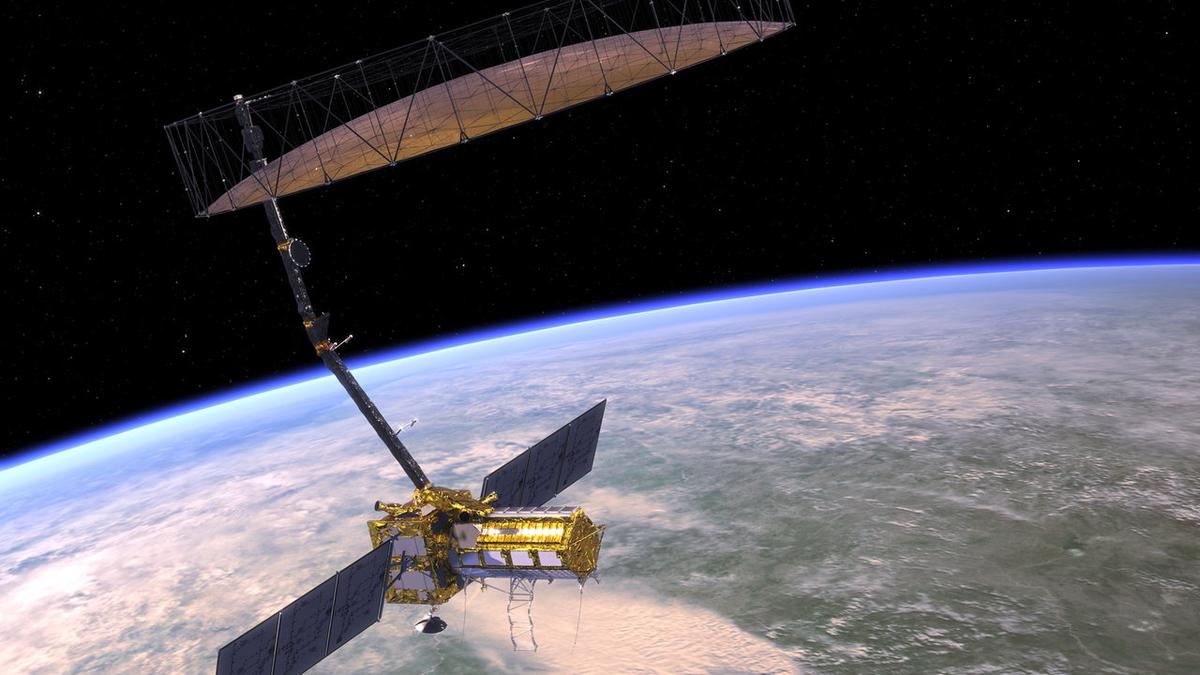
- 19 Jun 2025
In News:
Recently, NASA said the NASA-ISRO SAR mission had arrived at ISRO’s spaceport in Sriharikota
What is Synthetic Aperture Radar (SAR)?
Synthetic Aperture Radar (SAR) is an advanced remote sensing technology used to generate high-resolution images of Earth's surface, irrespective of weather or lighting conditions.
- Unlike optical sensors that rely on visible light, SAR systems emit microwave pulses and measure the reflected signals (echoes) from the ground, ocean, ice, or structures.
- These echoes are then processed to create detailed images using advanced signal processing techniques.
How SAR Works
- Antenna System: Traditionally, larger antennas yield better resolution, but they are impractical for satellites. SAR overcomes this by using a small antenna mounted on a moving platform (like a satellite), capturing echoes from different positions.
- Through precise timing and phase information, the system simulates a much larger "synthetic" antenna, enhancing image resolution without the need for large hardware.
Advantages of SAR
- All-Weather, All-Time Imaging: SAR can operate day and night and penetrate clouds, smoke, and light rain, ensuring uninterrupted data collection.
- Material Differentiation: Various materials (soil, water, vegetation, buildings) reflect microwaves differently, enabling SAR to detect subtle changes not visible through optical imagery.
- Large Area Mapping: Mounted on satellites, SAR can map swaths of land hundreds of kilometres wide in a single pass.
NASA-ISRO SAR (NISAR) Mission
- Joint Collaboration: A flagship Earth-observing mission between NASA and ISRO.
- On June 12, 2025, NASA confirmed that the NISAR satellite had arrived at ISRO’s spaceport in Sriharikota for its scheduled launch.
Mission Objectives
- NISAR will map nearly all of Earth's land and ice surfaces twice every 12 days.
- It aims to provide unprecedented data on Earth’s environment, including:
- Ecosystem disturbances
- Land use changes
- Ice sheet dynamics
- Natural disasters (earthquakes, landslides, floods)
Significance
- Will support climate change monitoring, disaster response, and agricultural planning.
- It represents a major step in India’s and the U.S.'s scientific diplomacy and technological cooperation.
International Big Cat Alliance (IBCA)
- 18 Jun 2025
In News:
The first General Assembly of the International Big Cat Alliance (IBCA) was held in New Delhi, marking a significant moment in global biodiversity governance. Chaired by Union Environment Minister Bhupender Yadav, who was unanimously elected President of the IBCA, the event underscored India’s leadership in international wildlife conservation diplomacy.
What is IBCA?
- The International Big Cat Alliance (IBCA) is a multinational initiative launched by India in March 2024 to conserve the world’s seven major big cat species—Tiger, Lion, Leopard, Snow Leopard, Cheetah, Jaguar, and Puma—through collective action, knowledge exchange, and capacity building.
- It is coordinated by the National Tiger Conservation Authority (NTCA) under the Ministry of Environment, Forest and Climate Change (MoEFCC).
- The Alliance was conceptualized following Prime Minister Narendra Modi’s announcement during the 50th anniversary of Project Tiger in April 2023.
Objectives of IBCA
- Promote global collaboration for the protection and conservation of big cats.
- Replicate successful conservation practices across member nations.
- Create a common pool of financial, technical, and institutional resources.
- Address gaps in capacity building, financing, and data sharing.
- Link conservation efforts with livelihood enhancement and climate resilience in big cat habitats.
- Strengthen efforts against poaching and illegal wildlife trade through joint surveillance and data exchange.
Membership
- 95 Range Countries (where the species naturally occur) are eligible to join.
- By September 2024, 25 countries including Bangladesh, Nigeria, Peru, and Ecuador had joined.
- Membership is open to all UN member states through a Note Verbale.
- The IBCA attained legal status after five countries—Nicaragua, Eswatini, India, Somalia, and Liberia—signed the Framework Agreement.
Key Functions of IBCA
- Shared Repository: Compilation of proven conservation strategies for scalable, science-based solutions.
- Training and Capacity Building: Organizes technical workshops and institutional exchanges.
- Scientific and Policy Support: Funds research, drives policy reforms, and raises awareness.
- Technological Innovation: Introduces advanced tools to tackle habitat degradation and prey base decline.
- Sustainable Livelihoods: Integrates conservation with community-based development models.
- Anti-Poaching Collaboration: Facilitates real-time data sharing and joint actions against wildlife trafficking.
Highlights from the 2025 General Assembly
- Venue: New Delhi, India
- Participating Nations: Ministerial delegations from nine countries including Bhutan, Cambodia, Kazakhstan, Liberia, Suriname, Somalia, Republic of Guinea, Eswatini, and India.
- Institutional Milestones:
- India ratified as the permanent headquarters of IBCA.
- The Headquarters Agreement was formally ratified, enabling the establishment of IBCA offices in India.
- Leadership: Bhupender Yadav, India’s Environment Minister, was elected as the first President of IBCA.
- Funding Commitment: India pledged ?150 crore (2023–28) to support IBCA’s establishment, coordination, and conservation activities.
Significance for India and the Global South
- Reinforces India’s role as a conservation leader and soft power in environmental diplomacy.
- Positions India as the epicentre for global big cat conservation, akin to its leadership in tiger conservation under Project Tiger.
- Encourages South-South cooperation in biodiversity preservation.
- Aligns with global commitments like CBD, CITES, and SDG 15 (Life on Land).
Bonn Climate Change Conference 2025
- 18 Jun 2025
In News:
The Bonn Climate Change Conference 2025 began in Bonn, Germany, with over 5,000 delegates from governments, international organisations, civil society, and scientific bodies. It serves as a crucial platform for setting the technical and political groundwork ahead of COP29.
What is the Bonn Climate Conference?
- A mid-year climate summit held annually under the United Nations Framework Convention on Climate Change (UNFCCC).
- Also referred to as the Sessions of the UNFCCC Subsidiary Bodies (SBs).
- First held in 1995, after the UNFCCC was signed in 1992.
- Hosted in: Bonn, Germany (home of the UNFCCC headquarters).
- Organised by: The UNFCCC Secretariat.
Main Objectives
- Prepare for COP Summits: Provides a platform for technical discussions that shape the COP agenda (COP29 in this case).
- Review of Commitments: Tracks implementation of earlier climate agreements like the Paris Agreement.
- Science–Policy Integration: Connects IPCC research with policymaking processes.
- Support for Developing Nations: Discusses climate finance and technology transfer mechanisms.
- Inclusive Participation: Engages Indigenous communities, NGOs, experts, and private stakeholders.
Subsidiary Bodies of the UNFCCC
- SBI (Subsidiary Body for Implementation):
- Reviews how climate commitments are implemented.
- Facilitates support for developing countries.
- SBSTA (Subsidiary Body for Scientific and Technological Advice):
- Provides scientific guidance.
- Bridges IPCC reports with UNFCCC decision-making.
Key Focus in 2025
Global Goal on Adaptation (GGA)
- Originally mentioned in the Paris Agreement (2015).
- Received major progress only during COP28 (Dubai).
- Aim: Establish a global, measurable, and equitable adaptation framework, similar to the 1.5°C target for mitigation.
- Bonn 2025 focuses on operationalising this goal, especially for climate-vulnerable nations.
Importance of the Bonn Conference
- Pre-COP Platform: Decisions taken here set the tone and agenda for COP summits.
- Technical + Political Dialogue: Encourages cooperation between scientists, policymakers, and climate negotiators.
- Influences Global Climate Action: Outcomes impact the direction of global climate governance.
SIPRI Yearbook 2025
- 18 Jun 2025
In News:
The Stockholm International Peace Research Institute (SIPRI) has released its 2025 Yearbook, detailing global nuclear trends, armament expansions, and security concerns. The report highlights growing nuclear arsenals and modernisation efforts by all nine nuclear-armed states, including India, which increased its nuclear warhead stockpile in 2024.
India’s Nuclear Arsenal: Key Facts
- Warhead Count (Jan 2025): 180 (up from 172 in Jan 2024)
- India is expanding its nuclear delivery systems, including canisterised missiles that may carry mated or multiple warheads.
- India continues to invest in new-generation weapons and submarine-launched ballistic missiles.
Pakistan and China: Regional Dynamics
- Pakistan: Maintains ~170 warheads; developing new delivery systems and accumulating fissile material.
- China:
- Warheads (2025): 600 (24 deployed).
- Adding ~100 warheads annually since 2023.
- Constructing ~350 new ICBM silos.
- Expected to reach 1,000 warheads by 2032–33, possibly 1,500 by 2035.
Global Nuclear Overview (2025)
- Total nuclear warheads: 12,241
- Military stockpiles (available for use): 9,614
- Deployed warheads (with missiles/aircraft): 3,912
- High-alert warheads (on ballistic missiles): ~2,100 (mostly U.S. & Russia)
Country-wise Inventory Snapshot (2025):
- USA: 5,177 (1,770 deployed, 1,930 stored)
- Russia: 5,459 (1,718 deployed, 2,591 stored)
- China: 600
- India: 180
- Pakistan: 170
- Others: UK, France, Israel, North Korea
Emerging Concerns
- Arms Control Breakdown:
- No major nuclear power is showing full commitment to disarmament.
- New START Treaty (USA-Russia) expires in Feb 2026; no successor yet in sight.
- Potential for increase in deployed strategic warheads post-2026.
- Rising Crisis Risks:
- 2025 saw India-Pakistan tensions escalate to limited armed conflict.
- Strikes on nuclear-related military sites and disinformation increased nuclear risk.
- New Technologies & Doctrines:
- Countries are integrating MIRVs, canisterisation, and AI-based command systems.
- China may now keep warheads mounted during peacetime, like U.S. and Russia.
Military Spending and Arms Trade (2024)
- Global defence spending: $2.7 trillion (↑ 9.4%)
- Top military spenders:
- USA: $997 billion
- China: $314 billion
- Top arms importers: Ukraine, India, Qatar, Saudi Arabia, Pakistan
- Top arms exporters:
- USA: 43%
- France: 9.6%
- Russia: 7.8%
About SIPRI
- Founded: 1966, Stockholm, Sweden
- Focus: Independent research on conflict, arms control, nuclear disarmament, and security.
- Funded by: Swedish Parliament (core grant), plus support from global research bodies.
Cyprus & India-EU FTA
- 18 Jun 2025
In News:
Prime Minister Narendra Modi began his five-day, three-nation tour with a historic visit to Cyprus—the first by an Indian PM in over 20 years. His visit focused on strengthening economic ties and pushing forward the India–European Union Free Trade Agreement (FTA).
Key Highlights of the Visit
- India-EU FTA Commitment: PM Modi announced that India and the EU are committed to concluding a Free Trade Agreement by the end of 2025. Negotiations have gained momentum.
- India–Cyprus Economic Engagement:
- Addressed the India-Cyprus CEO Forum in Limassol, pitching India as a hub for digital innovation and infrastructure.
- Highlighted India’s digital growth: Over 50% of global digital transactions via UPI originate from India. Talks are ongoing to onboard Cyprus into UPI.
- Announced a new shipbuilding policy and noted an annual investment of USD 100 billion in infrastructure.
- Supported the launch of the India–Cyprus–Greece Business and Investment Council, promoting trilateral cooperation.
- Welcomed the NSE–Cyprus Stock Exchange partnership in GIFT City, Gujarat.
- Startup and Innovation Focus: Emphasised India's vibrant startup ecosystem with over 1 lakh startups offering innovative, scalable solutions.
About Cyprus – Key Facts for Prelims
- Location: Eurasian island in the northeastern Mediterranean Sea, south of Turkey and southeast of Greece.
- Capital: Nicosia
- Area: 9,251 sq. km (3rd largest island in the Mediterranean after Sicily and Sardinia)
- Climate: Mediterranean – dry summers and wet winters
- Highest Point: Mount Olympus (1,952 m)
Geopolitical Context
- Divided Island:
- Since 1974, Cyprus has been partitioned between a Turkish-controlled north and a Greek-Cypriot-controlled south.
- Only Turkey recognises Northern Cyprus as an independent state.
- A UN-patrolled Green Line separates the two regions.
- Political System: Presidential republic – the President is both head of state and government.
- Official Languages: Greek and Turkish
- EU Membership: Joined the European Union on May 1, 2004
- Major Cities: Limassol, Larnaca, Famagusta, Paphos
UNESCO Creative Cities Network (UCCN)
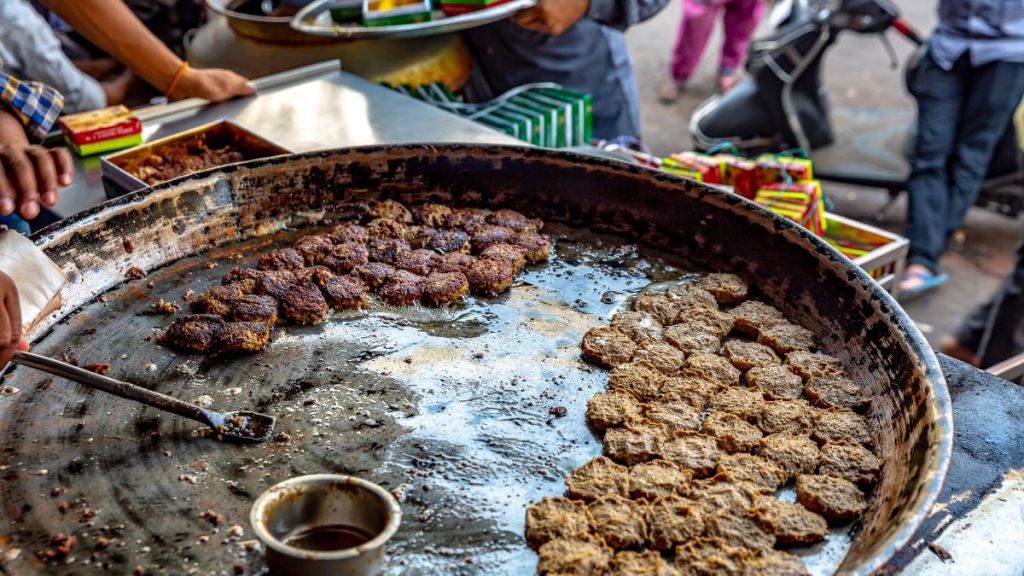
- 18 Jun 2025
In News:
Lucknow has officially submitted its nomination to be recognised as a “City of Gastronomy” under the UNESCO Creative Cities Network (UCCN), aiming to join Hyderabad as the only other Indian city to hold this title in the gastronomy category.
About the UCCN
- Established: 2004
- Purpose: To promote international cooperation among cities that use creativity as a key element for sustainable urban development.
- Focus Areas: Literature, Music, Crafts & Folk Arts, Design, Film, Media Arts, and Gastronomy.
- Key Goals:
- Leverage the creative economy for sustainable development.
- Encourage cultural diversity and resilience against urban challenges like climate change and inequality.
- Promote collaboration across public, private, and civil society sectors.
UCCN and Sustainable Development
- UCCN supports the UN Sustainable Development Goals (SDGs) by positioning culture and creativity at the heart of local development policies and planning.
- Member cities are expected to create innovation hubs, support local artists, and preserve cultural heritage.
India and the UCCN
As of 2023, 10 Indian cities are part of the network:
- Hyderabad – Gastronomy
- Jaipur – Crafts and Folk Arts
- Varanasi – Music
- Chennai – Music
- Mumbai – Film
- Srinagar – Crafts and Folk Arts
- Kozhikode – Literature
- Gwalior – Music (Recent entries include Kozhikode and Gwalior)
Lucknow’s Nomination: Highlights
- Nominated Title: City of Gastronomy
- Coordinated by: Department of Tourism and Culture, Lucknow
- Culinary Heritage: Awadhi cuisine, including dishes like nihari, kebabs, biryani, khasta, kulfi, jalebi, and puri-sabzi.
- Cultural Value: The city’s food is not just a tradition but a living culinary ecosystem, passed down through generations and practiced by diverse communities.
- Dossier Preparation: By renowned heritage conservationist Abha Narain Lambah.
- Verification: A field visit by UNESCO is expected as part of the evaluation process.
Global Cities of Gastronomy (Examples)
- Alba (Italy)
- Arequipa (Peru)
- Bergen (Norway)
- Belem (Brazil)
- Bendigo (Australia)
These cities, like Hyderabad, are recognised for their distinctive and sustainable culinary traditions.
Cyber Suraksha Exercise
- 17 Jun 2025
In News:
A comprehensive national-level cyber security exercise, Cyber Suraksha, was launched by the Defence Cyber Agency (DCyA) under the Headquarters Integrated Defence Staff (HQ IDS).
About Cyber Suraksha
- Type: Multi-phased cybersecurity drill.
- Organised by: Defence Cyber Agency (DCyA) under the aegis of HQ IDS.
- Duration: From 17–27 June 2025.
- Participants: Over 100 experts from national agencies and defence domains.
- Environment: High-paced, gamified simulation of real-world cyber threats.
Objectives
- Enhance national cyber resilience.
- Train personnel in handling advanced cyberattacks.
- Promote a security-first culture across defence institutions.
- Integrate technical proficiency with strategic leadership.
Key Features
- Training capsules: Technical + leadership components.
- CISOs Conclave: Sessions by cybersecurity leaders, culminating in a table-top simulation.
- Hands-on exercises: Real-time attack simulations to test response capabilities.
- Focus on joint operations and decision-making under crisis.
About Defence Cyber Agency (DCyA)
Background
- Established: Announced in 2018, operational from November 2019.
- Origin: Recommended by Naresh Chandra Committee (2012).
- Part of India’s tri-service defence transformation, alongside proposed Aerospace and Special Operations Commands.
Role & Mandate
- Parent Ministry: Ministry of Defence (MoD).
- Reports to: Chief of Defence Staff (CDS) through Integrated Defence Staff (IDS).
- Location: Based in New Delhi.
Functions
- Conducts cyber defence operations for the armed forces.
- Coordinates incident response, cyber intelligence, and audits.
- Develops capabilities in cyber warfare, AI-driven cyber tools, and joint operations.
- Supports capacity building, certification, and training within the military.
Radio Nellikka

- 17 Jun 2025
In News:
Chief Minister Pinarayi Vijayan inaugurated Radio Nellikka, an internet radio for children launched by the Kerala State Commission for Protection of Child Rights (KeSCPCR) on June 2025.
What is Radio Nellikka?
- A child-centric internet radio platform launched by KeSCPCR.
- Aims to promote child rights, awareness, and safety through audio content.
- Accessible globally, with 4 hours of programming from Monday to Friday (new content), and repeats on weekends.
- Launch included unveiling of the radio's logo and theme song.
Objectives
- Create a child-friendly Kerala through rights-based literacy.
- Spread awareness on child protection laws, mental health, substance abuse, and cyber safety.
- Empower children with knowledge and build resilience against social challenges.
- Promote responsible parenting and community involvement in child welfare.
Significance
- Addresses rising challenges: social media addiction, cyber threats, child suicides, and mental health issues.
- Provides accessible, engaging content to both children and guardians.
- Acts as a preventive and educational tool against misinformation related to child rights.
- Supports emotional and legal literacy in a format suited for young audiences.
AI and Biomanufacturing in India
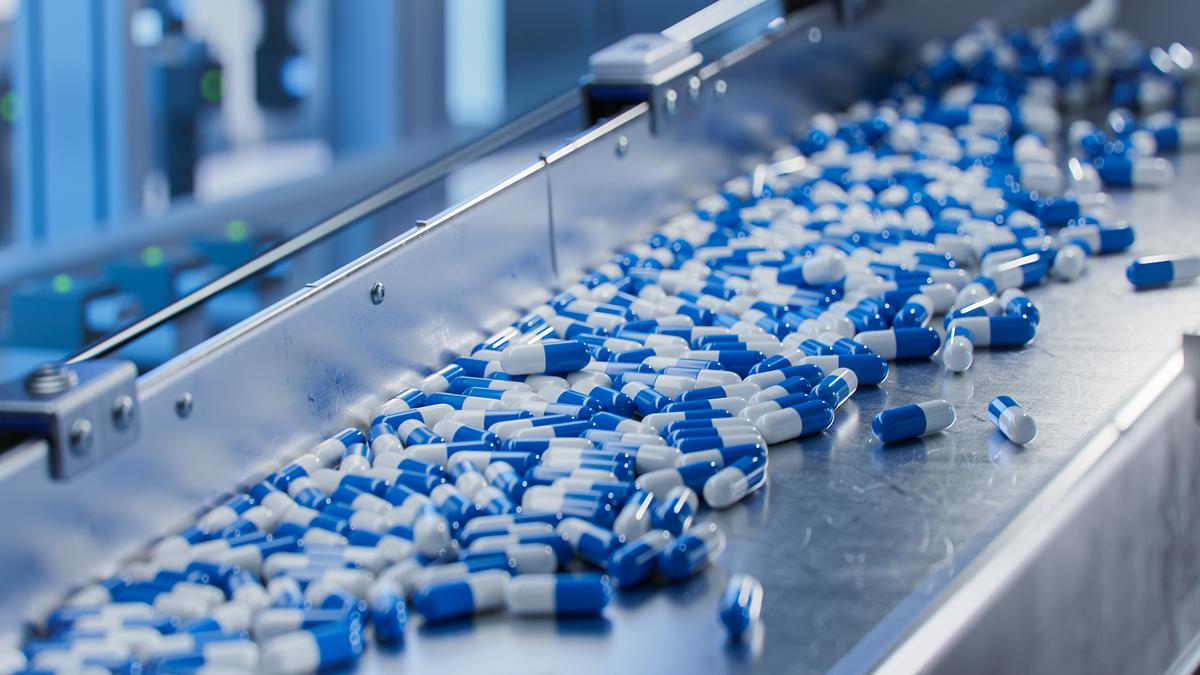
- 17 Jun 2025
In News:
The integration of Artificial Intelligence into India's biomanufacturing sector is gaining momentum with the launch of the BioE3 Policy and the IndiaAI Mission.
What is Biomanufacturing?
- Biomanufacturing involves the use of living cells, enzymes, or biological systems to produce commercial goods such as vaccines, biologics, biofuels, specialty chemicals, biodegradable plastics, and advanced materials.
- The convergence of synthetic biology, industrial biotechnology, and artificial intelligence (AI) has expanded its scope across sectors like healthcare, agriculture, energy, and materials science.
- India, often called the “Pharmacy of the World”, produces over 60% of global vaccines, underlining its industrial strength in biomanufacturing.
Role of Artificial Intelligence in Biomanufacturing
AI is revolutionizing biomanufacturing by making it predictive, efficient, and scalable:
- AI-Powered Process Optimization: Machine learning tools adjust variables like temperature, pH, and nutrient supply in real time to enhance fermentation and reduce batch failure.
- Digital Twins: Virtual replicas of biomanufacturing plants allow engineers to simulate operations, test changes, and foresee potential disruptions without real-world risks.
- Accelerated Drug Discovery: AI expedites molecular modeling and screening of drug candidates, reducing time and cost of development.
- Predictive Maintenance: AI forecasts machinery failures, improving equipment reliability and reducing downtime.
- Smart Supply Chains: AI-driven logistics optimize cold-chain storage and forecast medicine demand, ensuring timely distribution.
Indian Examples and Industrial Applications
- Biocon uses AI to enhance drug screening and fermentation quality.
- Strand Life Sciences applies machine learning in genomics for faster diagnostics.
- Wipro and TCS are developing AI platforms for clinical trials, molecule screening, and treatment prediction.
- AI is also being explored in rural healthcare, using region-specific data for localized diagnostics and advisories.
Key Government Initiatives
- BioE3 Policy (2024):
- Envisions Bio-AI hubs, biofoundries, and next-gen biomanufacturing infrastructure.
- Supports startups with funding and incentives.
- IndiaAI Mission:
- Promotes ethical, explainable AI in sectors like health and biotech.
- Supports bias reduction, machine unlearning, and transparency in AI models.
- Biomanufacturing Mission (2023): Aims to promote R&D and domestic production in bio-based sectors.
- PLI Scheme for Biotech: Incentivizes local production of enzymes, fermentation inputs, and biologics.
- Digital Personal Data Protection Act (2023): Lays down principles for lawful data processing, though not tailored for AI-biotech intersection yet.
Challenges in Policy and Regulation
Regulatory Gaps:
- India’s existing drug and biotech laws were designed before the AI era.
- No clear mechanism exists to audit, certify, or govern AI-operated bioreactors or predictive drug systems.
Data and Model Risks:
- AI systems trained on urban datasets may fail in rural or semi-urban manufacturing due to variable water quality, temperature, or power conditions.
- Lack of norms on dataset diversity and model validation raises risk of system failure and reputational damage.
- Intellectual Property Issues: Traditional IP laws do not clarify ownership of AI-generated inventions, molecules, or production protocols.
Workforce and Infrastructure:
- Biomanufacturing needs a workforce skilled in both computational biology and automation.
- India’s AI-bio talent gap and limited high-tech infrastructure outside metro cities hinders inclusive growth.
Ethical & Safety Concerns:
- Without context-specific oversight, AI errors can threaten public safety and product integrity.
- Trust in AI systems requires clear guidelines on explainability, accountability, and redress mechanisms.
Global Best Practices
- EU’s AI Act (2024): Classifies AI applications based on risk levels. High-risk applications (e.g., genetic editing) are subject to strict audits.
- US FDA Guidance (2025):
- Introduces seven-step credibility frameworks for AI in healthcare.
- Predetermined Change Control Plans (PCCPs) allow iterative AI updates while ensuring safety.
India lacks similar risk-based, adaptive oversight.
Policy Recommendations
- Establish AI-Biomanufacturing Regulatory Framework:
- Introduce tiered regulation based on context and risk.
- Define use-cases, audit mechanisms, and model validation standards.
- Mandate Dataset Diversity & Safety Audits:
- Ensure AI tools are trained on representative, unbiased, clean data.
- Create regulatory sandboxes to test AI systems in controlled environments.
- Strengthen Public–Private Partnerships:
- Boost industry-academia collaborations.
- Incentivize private investment through R&D credits and de-risking instruments.
- Modernize IP and Licensing Laws:
- Establish clarity on ownership of AI-generated discoveries.
- Develop licensing frameworks for bio-AI algorithms and training data.
- Upskill the Workforce: Promote interdisciplinary training across life sciences, data science, and industrial robotics.
AviList
- 17 Jun 2025
In News:
Recently, the global ornithological and conservation community witnessed a landmark development with the launch of AviList, the first-ever unified global checklist of bird species. This effort is the culmination of four years of work by the Working Group on Avian Checklists, representing leading ornithological and conservation institutions.
About AviList:
- What is it? AviList is a comprehensive, standardized, and freely accessible global bird species checklist.
- Total Entries (2025 Edition):
- Species: 11,131
- Subspecies: 19,879
- Genera: 2,376
- Families: 252
- Orders: 46
- Replacing Previous Lists:
- International Ornithological Committee (IOC) List
- Clements Checklist
- Update Mechanism: To be updated annually
- Access and Formats:
- Available freely at www.avilist.org
- Downloadable in full or short versions in .xlsx and .csv formats.
Developed By:
Working Group on Avian Checklists, comprising representatives from:
- BirdLife International
- Cornell Lab of Ornithology
- American Ornithologists' Society
- International Ornithologists’ Union
- Avibase (Global Bird Database)
Significance and Benefits:
- Conservation and Research Clarity:
- A unified taxonomy helps prioritize conservation efforts by eliminating taxonomic inconsistencies.
- Scientists can now communicate uniformly on species classification and distribution.
- Global Standardization: Replaces multiple competing checklists, reducing confusion and ensuring consistency across countries and platforms.
- Interdisciplinary Use: Supports birdwatchers, scientists, policymakers, and conservationists in sharing data, linking platforms, and enhancing global collaborations.
- Improved Policy and Decision-Making: Aids in aligning biodiversity policies across nations by ensuring a standardized species concept.
- Technological Integration: Enables harmonization of databases and online tools like eBird, Avibase, and global biodiversity monitoring platforms.
DNA Identification in Mass Fatality Events
- 17 Jun 2025
In News:
Following the tragic crash of an Air India Boeing 787 Dreamliner from Ahmedabad to London Gatwick (June 2025), authorities have initiated DNA-based identification to match the remains of victims. In mass fatality incidents where bodies are mutilated or decomposed, DNA analysis becomes the gold standard for establishing identity.
What is DNA Identification?
DNA (Deoxyribonucleic Acid) is a unique genetic code present in almost every cell of the human body, with the exception of identical twins. It is widely used in forensic science for accurate identification, particularly in disasters where visual identification is impossible.
Sample Collection and Preservation:
- DNA begins degrading post-mortem, and the rate of degradation is influenced by:
- Type of tissue (soft vs hard)
- Environmental conditions (humidity, temperature)
- Hard tissues such as bones and teeth are preferred due to better preservation against decomposition.
- Soft tissues (like skin and muscle) degrade faster and, if used, must be stored in 95% ethanol or frozen at -20°C.
- In large-scale accidents, sample collection from wreckage can take weeks or even months (e.g., 9/11 took 10 months).
Reference Samples:
To match unidentified remains, reference DNA is taken from biological relatives—preferably parents or children of the victims, who share about 50% of their DNA.
Methods of DNA Analysis:
1. Short Tandem Repeat (STR) Analysis:
- Evaluates short, repeating DNA sequences that vary among individuals.
- Requires nuclear DNA, hence not suitable if the DNA is highly degraded.
- Analysis of 15+ hyper-variable STR regions can confirm family relationships with high accuracy.
2. Mitochondrial DNA (mtDNA) Analysis:
- Used when nuclear DNA is not recoverable.
- mtDNA is inherited exclusively from the mother and is present in multiple copies per cell.
- Effective for matching with maternal relatives (e.g., mother, maternal uncles/aunts, siblings).
3. Y-Chromosome Analysis:
- Targets male-specific genetic material.
- Useful for identifying remains using DNA from paternal male relatives (father, brothers, paternal uncles).
- Helpful when direct relatives are unavailable but male-line relatives exist.
4. Single Nucleotide Polymorphisms (SNPs) Analysis:
- Suitable when DNA is highly degraded.
- Analyzes variations at single base-pair locations in DNA.
- Can also match DNA with personal items like a toothbrush or hairbrush.
- However, less accurate than STR analysis.
Significance for Disaster Management and Forensics:
- DNA-based victim identification ensures scientific accuracy, aiding in closure for families, and upholding legal and humanitarian obligations.
- Modern forensic genetics has become an essential tool in mass disaster response protocols worldwide.
Gyan Post
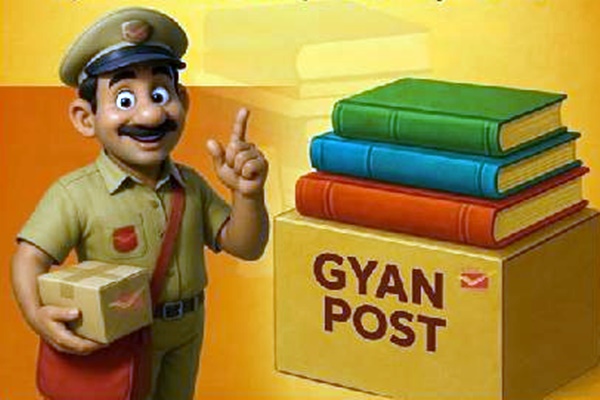
- 15 Jun 2025
In News:
The Department of Posts, under the Ministry of Communications, launched a new service called ‘Gyan Post’ to facilitate affordable delivery of educational and cultural books across India.
Key Highlights:
Objective:
- To bridge the educational divide by improving access to printed educational materials, especially in rural and remote regions.
- Aligned with the goals of the National Education Policy (NEP) to promote inclusive education.
Salient Features:
- Service Availability: All Departmental Post Offices across India.
- Type of Material:
- Only non-commercial printed educational, cultural, social, and religious books.
- Books must not contain advertisements or promotional content.
- Must bear the name of the printer or publisher.
- Delivery Mode: Surface mail (traceable) – enhances transparency and reliability.
- Tariff Structure:
- ?20 for packets up to 300 grams
- ?100 for packets up to 5 kilograms (excluding applicable taxes)
- Tracking: Available to ensure accountability and customer confidence.
Significance:
- Promotes educational equity by supporting learners in under-served areas.
- Complements Digital India and NEP 2020 by reinforcing multi-modal education access (print + digital).
- Encourages the circulation of knowledge, especially in regions with poor digital penetration.
Servants of India Society
- 15 Jun 2025
In News:
Tensions have resurfaced between Gokhale Institute of Politics and Economics (GIPE) and the Servants of India Society (SIS) over control of a joint bank account and allegations of financial misconduct. This has brought attention back to the legacy and functioning of the historic SIS.
About Servants of India Society (SIS)
- Founded: June 12, 1905
- Founder: Gopal Krishna Gokhale, with G.K. Devadhar, A.V. Patwardhan, and N.A. Dravid
- Location: Fergusson Hill, Pune, Maharashtra
- Headquarters: Pune, with branches in Chennai, Mumbai, Nagpur, Allahabad, etc.
Objectives:
- To train a dedicated cadre of national workers for selfless service to the nation.
- Promote political education, social reform, and public service.
- Work towards upliftment of underprivileged communities, including rural and tribal populations.
- Achieve social change through constitutional and moderate means, not violent agitation.
Membership and Structure:
- Members undergo a five-year training period and vow to serve on modest salaries.
- Considered “young missionaries of Indian nationalism.”
- Notable Members:
- V.S. Srinivasa Sastri (later president after Gokhale’s death in 1915)
- Hriday Nath Kunzru
- A.V. Thakkar
Ideological Basis:
- Strong emphasis on constitutionalism, moderation, and liberalism.
- Aimed to create a disciplined, morally upright civil society to complement political struggle.
About Gopal Krishna Gokhale:
- Born: May 9, 1866 | Died: February 19, 1915
- Moderate leader of the Indian National Congress and a liberal reformer.
- Influenced by Justice M.G. Ranade and Western political thought.
- Advocated for gradual self-governance and saw value in British-initiated modernization.
- Played a pivotal role in the Morley-Minto Reforms (1909).
- Mentor to Mahatma Gandhi and known for his economic insight and powerful oratory.
Step-and-Shoot Spot-Scanning Proton Arc Therapy (SPArc)

- 15 Jun 2025
In News:
In a significant medical advancement, a team at the Corewell Health William Beaumont University Hospital in the U.S. has successfully administered Step-and-Shoot Spot-Scanning Proton Arc Therapy (SPArc) to treat adenoid cystic carcinoma—a cancer originating in the parotid gland. This marked the first-ever clinical application of this technology. The findings were published in the International Journal of Particle Therapy in June 2025.
What is SPArc Therapy?
SPArc (Spot-Scanning Proton Arc Therapy) is an advanced form of proton beam therapy where proton particles are delivered in a controlled arc across the tumor. It includes two primary modalities:
- Step-and-Shoot SPArc: Follows a pre-programmed dose delivery path.
- Dynamic SPArc: Simulated version where energy levels and targeting points are adjusted in real-time. (Still under regulatory review)
Comparison with Existing Techniques
The study compared three techniques:
- SFO-IMPT (Single-Field Optimized Intensity-Modulated Proton Therapy – current standard)
- Step-and-Shoot SPArc (clinical)
- Dynamic SPArc (simulated)
SPArc showed reduced radiation exposure to key organs when compared with SFO-IMPT:
- Brainstem: ↓ 10%
- Optical chiasm: ↓ 56%
- Oral cavity: ↓ 72%
- Spinal canal: ↓ 90%
Treatment Case Study
The first patient treated was a 46-year-old woman with a tumor extending from her parotid gland to the base of her skull. She underwent 33 sessions of SPArc therapy from June to August 2024, reporting only minor skin irritation and no disruptions to eating or daily functioning.
Process & Technology Used:
- Cone-Beam CT (CBCT) was used for real-time imaging before each session.
- A machine learning model converted CBCT to synthetic CT, allowing accurate dose tracking.
- As the patient lost weight, the dose plan was adjusted after two weeks to maintain precision.
- Nine beam angles spanning a 180º arc were used, delivering radiation at 20º intervals.
Each session lasted about 15–18 minutes, enabling nearly continuous dose delivery.
Working Mechanism
- The therapy operates by 'painting' the tumor in energy layers.
- Each energy level targets a specific tissue depth, ensuring maximum precision.
- The system scans dozens of spots in each layer before moving to the next one with increased penetration.
Advantages
- High precision in delivering radiation to deep and complex anatomical regions like the skull base.
- Limits collateral damage to vital organs.
- Effective in large or invasive tumours.
- Better quality of life during treatment (reduced side effects such as fatigue or swallowing issues).
Limitations & Concerns
- Geographical miss risk: Tiny tumors may be missed due to breathing motion or tumor shrinkage over time.
- Cost: High installation and operational costs, making it suitable for a limited patient base.
- Potential for overuse in non-indicated cases, leading to inequitable healthcare delivery.
- Dynamic SPArc still awaits regulatory clearance and integration into oncology systems.
Significance for India
SPArc therapy can be transformative for cancers in anatomically intricate regions and may serve as a benchmark for future precision cancer therapies. However, adoption in India requires cost-reduction, infrastructure investment, and regulatory frameworks.
Spartaeus karigiri
- 15 Jun 2025
In News:
A team of researchers has identified a new species of jumping spiders of the Spartaeinae subfamily in southern India, known for their intelligent hunting skills and web-invasion tactics.
Source: European Journal of Taxonomy (June 2025)
Key Facts:
- Species Name: Spartaeus karigiri
- Taxonomy:
- Family: Salticidae (Jumping Spiders)
- Subfamily: Spartaeinae
- Genus: Spartaeus
- Named After: Karigiri (Elephant Hill) in Devarayanadurga, Karnataka.
Significance:
- First recorded presence of Spartaeus and Sonoita genera in India.
- These genera were previously known only from Southeast Asia and Africa.
- Discovery expands India’s Spartaeinae spider fauna to 15 species across 10 genera.
Features of Spartaeus karigiri:
- Noted for intelligent hunting and web-invasion tactics.
- Possesses keen eyesight and mimics prey to deceive other spiders.
- Males were found in rocky crevices; females guarding egg clutches.
- Found in Karnataka and Villupuram, Tamil Nadu.
Other Findings:
- Sonoita cf. lightfooti, previously known from Africa, was also found in Karnataka.
- A taxonomic correction: Marpissa gangasagarensis (2005) is the same as Phaeacius fimbriatus (1900).
Conservation and Research Insight:
- India's arachnid diversity remains under-studied.
- New discoveries indicate rich but undocumented biodiversity in Indian terrains.
Rudrastra
- 15 Jun 2025
In News:
India's Rudrastra, a homegrown VTOL drone, has been successfully tested by the Indian Army, marking a significant advancement in battlefield technology. Developed by Solar Aerospace and Defence Limited, this drone can perform precision strikes across borders without endangering soldiers.
Overview:
- Rudrastra is a hybrid Vertical Take-Off and Landing (VTOL) combat drone developed indigenously by Solar Aerospace and Defence Limited (SDAL).
- Successfully tested by the Indian Army in June 2025.
Key Features:
- Hybrid VTOL Capability:
- Takes off like a helicopter and cruises like a fixed-wing aircraft.
- Increases versatility, maneuverability, and stealth.
- Combat Role:
- Equipped with smart anti-personnel warheads.
- Capable of deep-strike missions against targets like artillery guns or terrorist hideouts.
- Deployed as a “stand-off weapon”—engages targets from a safe distance.
- Performance Parameters:
- Range: Full range of 170 km.
- Strike Capability: Targets more than 50 km away.
- Flight Endurance: Nearly 90 minutes.
- Navigation: Autonomous return capability.
- Surveillance: Real-time video feed for reconnaissance.
- Payload: Capable of deploying airburst munitions—detonates low to the ground to cause area damage.
Strategic Importance:
- Reduces risk to soldiers in hostile territory.
- Enhances India's unmanned combat aerial vehicle (UCAV) arsenal.
Useful in anti-terror operations, border surveillance, and precision strikes.
Global Education Monitoring (GEM) Report 2025
- 16 Jun 2025
In News:
The Global Education Monitoring (GEM) Report 2025, published by UNESCO, reveals an alarming surge in the global out-of-school population, now estimated at 272 million—an increase of over 21 million from previous estimates. This setback highlights that by 2025, countries will collectively fall short of their national education targets by 75 million children.
About the GEM Report
- An annual UNESCO publication, originally launched as the Education for All Global Monitoring Report in 2002 and renamed in 2016.
- Provides an evidence-based global assessment of education progress, challenges, and trends.
- Aims to guide policy decisions and strengthen efforts toward achieving SDG 4 (Quality Education).
Key Findings
- The out-of-school population includes:
- 78 million primary school-age children (11%)
- 64 million lower secondary adolescents (15%)
- 130 million upper secondary youth (31%)
- The rise of 21 million in out-of-school children since the last estimate is attributed to:
- New enrolment and attendance data (+8 million): Includes factors like the 2021 ban on girls' education in Afghanistan, which alone accounts for 1.4 million girls.
- Updated UN population projections (+13 million): The 2024 World Population Prospects estimate a 49 million increase in the global school-age population (6–17 years) by 2025.
- The report warns that conflict zones severely hamper data collection, likely underestimating the true number of out-of-school children.
Challenges with Data and Methodology
- The GEM model draws from administrative data, surveys, and census records to estimate schooling trends.
- However, during emergencies and crises, such models may fail to capture sudden drops in attendance, leading to an underreporting of affected populations.
- Conflict-ridden regions face poor data reliability, impacting planning and resource allocation.
Off-Track from Global Targets
- By 2025, countries will be off-track by:
- 4 percentage points for primary and lower secondary levels
- 6 percentage points for upper secondary level
- Even if national targets are met, the world will still have 107 million children out of school by 2030. The GEM report projects a reduction of 165 million if all targets are achieved—but current trajectories suggest this is unlikely.
Kruti and BharatGPT Mini
- 16 Jun 2025
In News:
India is witnessing a significant leap in artificial intelligence innovation with the launch of two indigenous AI models — Kruti by Krutrim and BharatGPT Mini by CoRover. These developments aim to democratize AI access across the country by addressing local needs, multilingual capabilities, and infrastructure limitations.
Kruti: India’s First Agentic AI Assistant
Developed by Krutrim, the AI startup co-founded by Bhavish Aggarwal (of Ola fame), Kruti is positioned as India’s first agentic AI, going beyond conventional chatbots. Launched in 2025, Kruti integrates task execution capabilities such as:
- Cab booking
- Food ordering
- Bill payments
- Image generation
- Research assistance
Kruti is powered by Krutrim V2, a locally trained large language model (LLM), and combines open-source AI systems to deliver scalable, cost-effective, and contextualised solutions.
Key Features of Kruti
- Multilingual Support: Understands voice and text in 13 Indian languages
- Personalised AI: Learns user preferences, adapts tone and content
- Human-Centric Design: Supports read-aloud responses, summarised answers, stories, and tables
- SDK for Developers: Offers embeddable tools for LLM orchestration and task automation
- Integrated Assistant: Eliminates app-switching fatigue through contextual task handling
Aggarwal highlighted that Kruti is built for “how Indians live”—mobile-first, intuitive, and multilingual—offering free access to advanced AI tools.
Strategic Investment and Open AI Ecosystem
Krutrim has committed ?12,000 crore in investment (?2,000 crore already, ?10,000 crore by next year), launched Krutrim AI Lab, and published technical resources, with contributions to the open-source community. The company is positioning itself as a competitive force against global giants like OpenAI, Google, and Anthropic, and local firms like Sarvam AI.
BharatGPT Mini: Small Language Model for Bharat
On the same day, CoRover, a conversational AI firm, unveiled BharatGPT Mini, a small language model (SLM) with 534 million parameters trained on its proprietary conversational dataset.
- Supports 14 Indian languages
- Designed for low-compute, low-infrastructure environments
- Enables offline and edge deployments for fast, privacy-centric performance
- Ideal for underserved and rural regions with limited internet or device capacity
SLMs like BharatGPT Mini are emerging as viable tools for domain-specific, lightweight, and privacy-respecting AI in India, complementing the role of LLMs in more complex tasks.
Ocean Darkening
- 16 Jun 2025
In News:
A recent study titled "Darkening of the Global Ocean", led by researchers from the University of Plymouth, has revealed that over 21% of the global ocean has darkened between 2003 and 2022, marking a significant environmental concern. The phenomenon, known as ocean darkening, is increasingly disrupting marine ecosystems and global climate regulation.
What is Ocean Darkening?
Ocean darkening refers to the reduction in the photic zone — the upper layer of the ocean (up to ~200 meters deep) where sunlight penetrates to support photosynthesis. This zone is foundational to:
- ~90% of marine biodiversity
- Climate regulation
- Ocean productivity
- Global fisheries
The study used satellite data and modeling based on the Diffuse Attenuation Coefficient (Kd 490), which measures how rapidly light fades through seawater. It found:
- 21% of global oceans experienced darkening in two decades.
- 9% saw photic depth decline by over 50 meters.
- 2.6% saw a reduction exceeding 100 meters — an area roughly equal to the size of Africa.
Geographic Distribution
- High darkening: Arctic, Antarctic, Gulf Stream, North Sea, eastern UK coast.
- Lesser darkening or even brightening: Some parts of the English Channel.
- The open ocean and climate-sensitive zones have witnessed the most pronounced declines.
Causes of Ocean Darkening
- Coastal Zones:
- Runoff of agricultural nutrients, organic matter, and sediments.
- Leads to algal blooms that block sunlight.
- Open Ocean:
- Shifts in plankton dynamics
- Rising sea surface temperatures
- Altered ocean circulation patterns
These changes may be linked to climate change, land-use modifications, and increased rainfall-driven erosion.
Impact on Marine Ecosystems
Ocean darkening leads to:
- Shrinking habitats for light-sensitive species like Calanus copepods (key zooplankton and food web base).
- Disrupted feeding, migration, and reproduction cycles due to reduced solar and lunar light cues.
- Increased crowding in shallower waters, intensifying competition and predation.
- Collapse of marine food chains, even in areas with minimal fishing pressure.
Experts warn that this could represent one of the largest habitat losses in recent history, with implications for:
- Biodiversity
- Carbon cycling
- Oxygen production
- Ocean buffering against climate change
SEBI’s Verified UPI ID System
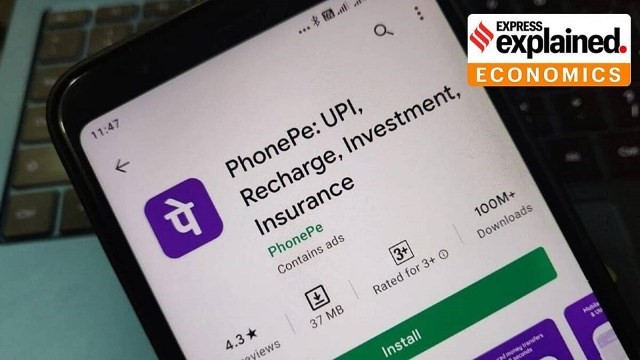
- 16 Jun 2025
In News:
To combat rising cyber frauds and impersonation in the securities market, the Securities and Exchange Board of India (SEBI) has announced a verified Unified Payments Interface (UPI) ID system for all SEBI-registered market intermediaries. This mechanism, developed in coordination with the National Payments Corporation of India (NPCI), will be effective from October 1, 2025, and is part of SEBI’s broader agenda to enhance investor security and transparency.
Key Features:
- Exclusive UPI IDs: Only SEBI-registered intermediaries will be issued validated UPI IDs featuring a structured format: username.category@validBank. For example, a broker ABC Ltd using XYZ Bank would have the UPI ID: abc.brk@validXYZ.
- Category-Specific Suffixes:
- .brk for stock brokers
- .mf for mutual funds
- Authentication Visual Cue: Transactions with verified UPI IDs will display a “thumbs-up inside a green triangle” icon for easy identification by investors.
Role of NPCI
NPCI, which owns and operates the UPI platform, will exclusively allocate the “@valid” handles for payment collection by SEBI-registered intermediaries. This move ensures only authorised entities can use these UPI IDs, significantly reducing risks of fund misdirection.
SEBI Check Tool
To supplement the system, SEBI is also launching ‘SEBI Check’, a verification tool allowing investors to:
- Scan a QR code or enter UPI ID manually to confirm its legitimacy.
- Verify bank details, including account number and IFSC, of registered entities.
Investor and Intermediary Compliance
- Mandatory for Intermediaries: All SEBI-registered intermediaries must adopt the new verified UPI handles and educate investors about them.
- Optional for Investors: While the structured UPI handle is optional, investors must use only the new IDs if opting to pay via UPI.
- Discontinuation of Old IDs: Existing UPI IDs will be discontinued after October 1, 2025, except for ongoing SIPs (Systematic Investment Plans). New and renewed SIPs must use the verified UPI IDs.
Benefits
- Prevents Fraud: Eliminates payments to unauthorised or impersonating entities.
- Enhances Transparency: Clearly distinguishes registered entities from fraudulent ones.
- Boosts Investor Confidence: Assures secure transactions through verified payment channels.
- Supports Cybersecurity: Clamps down on fake UPI handles used for digital scams.
SEBI’s verified UPI ID initiative and the upcoming ‘SEBI Check’ tool are significant steps toward ensuring secure, transparent, and trustworthy digital transactions in India’s securities market. It reflects the regulator’s proactive stance in protecting investor interests in an increasingly digitised financial environment.
Black Boxes in Aviation
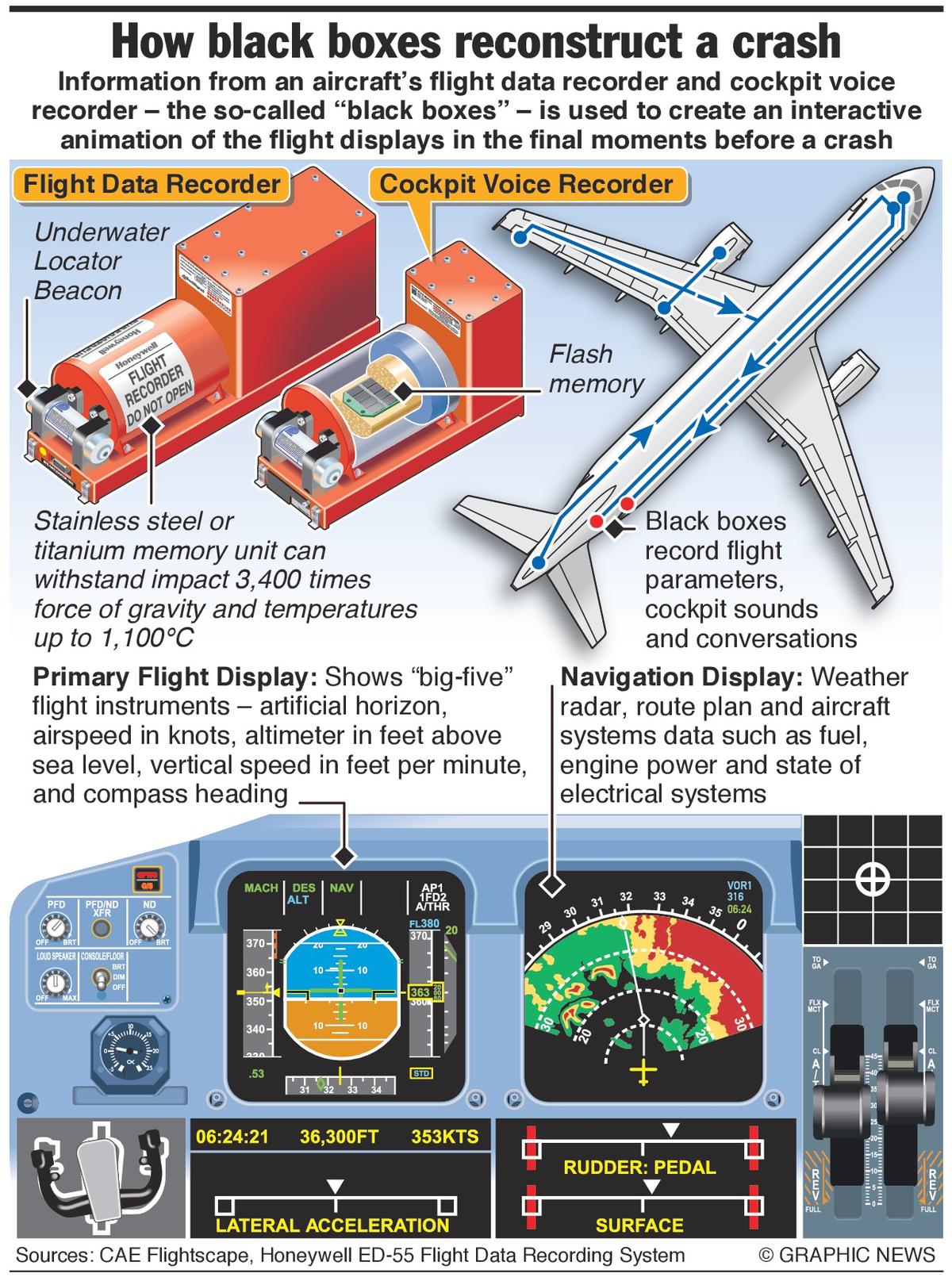
- 16 Jun 2025
In News:
The tragic crash of an Air India Boeing 787-8 Dreamliner from Ahmedabad to London Gatwick on June 12, 2025, has spotlighted the critical role of black boxes—a key component in aviation safety and accident investigations. Despite their name, these devices are painted bright orange for easy visibility at crash sites.
What are Black Boxes?
Modern aircraft are equipped with two essential flight recorders:
- Cockpit Voice Recorder (CVR): Captures pilot and co-pilot conversations, ambient cockpit sounds, alarms, and radio transmissions.
- Flight Data Recorder (FDR): Records up to 25 hours of technical flight data including altitude, speed, engine parameters, flight path, and over 3,500 variables.
These devices operate continuously without interruption, storing vital information that can reconstruct the events leading up to an air crash.
Design and Durability
Black boxes are built to withstand extreme conditions:
- Casing: Made from crash-resistant materials like titanium or steel.
- Survivability: Can endure temperatures up to 1,100°C, high-impact G-forces, and remain underwater for up to 30 days.
- Locator Beacon: Emit signals to help recovery teams locate them, especially in underwater crashes.
Why Are They Called 'Black' Boxes?
The term “black box” originated from early film-based recorders stored in light-tight boxes. However, modern units are painted bright orange with reflective strips to aid visual detection after accidents.
Evolution of Flight Recorders
- 1930s: François Hussenot in France developed early photographic film-based recorders.
- 1953-54: Dr. David Warren in Australia invented the modern FDR while investigating unexplained crashes of the de Havilland Comet.
- 1960: Mandatory installation of CVRs and FDRs in commercial aircraft.
- 1965: Regulators required recorders to be painted in visible colours.
- 1990: Solid-state memory replaced magnetic tapes, increasing durability and storage capacity.
India's Aircraft Accident Investigation Bureau (AAIB), under the Ministry of Civil Aviation, oversees accident probes. In April 2025, it established a dedicated flight recorder laboratory in New Delhi to improve investigation efficiency.
Technological Advancements
- Combined Recorders: Modern systems often integrate CVR and FDR in a single unit to meet ICAO norms for extended recording.
- Deployable Recorders: Automatically ejected during a crash, float on water, and transmit their location using an Emergency Locator Transmitter (ELT).
- Satellite-Based Data Streaming: Future technologies aim to stream flight data in real time, minimizing data loss during oceanic crashes.
Black boxes serve as the backbone of aviation accident investigations by providing critical insight into aircraft performance and crew actions before a crash. Their development reflects ongoing efforts to enhance air travel safety and accountability. The Ahmedabad crash investigation led by the AAIB will heavily rely on these devices to determine the exact sequence of events and prevent future tragedies.
RBI Infuses Rs.23,856 Crore into Banking System via Government Securities Buyback
- 14 Jun 2025
In News:
In a significant move to bolster liquidity in the financial system, the Reserve Bank of India (RBI) has infused ?23,856 crore into the banking system through a buyback of government securities (G-Secs) on June 5, 2025. This marks the second such bond buyback by the central bank in the current financial year (FY 2025–26).
What is a Bond Buyback?
A bond buyback refers to the RBI repurchasing existing government securities before their maturity. Conducted on behalf of the central government, such operations aim to inject durable liquidity into the banking system, improve the liquidity position of banks, and influence interest rates. It is part of the RBI's broader Open Market Operations (OMOs) toolkit.
Broader Liquidity Context
The RBI’s intervention is part of a broader liquidity management strategy, aimed at ensuring stable and surplus liquidity conditions. The central bank has employed various tools in recent months:
- Open Market Operations (OMOs)
- USD/INR Buy/Sell swap auctions
- Variable Rate Repo (VRR) auctions
These tools were especially crucial after the banking system faced a liquidity deficit in late 2024. Since then, the RBI’s operations have restored liquidity, with the system now in surplus mode—estimated at around ?3 lakh crore.
Significance
- Monetary Stability: Enhances the transmission of monetary policy by ensuring banks have sufficient funds to lend.
- Market Functioning: Eases pressure in the bond markets, improves demand for new issuances, and helps manage interest rates.
- Fiscal Management: Supports the government's borrowing program by managing the maturity profile of debt and yields.
India’s First INTERPOL Silver Notice
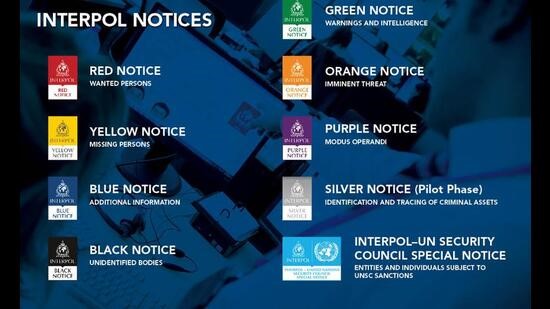
- 14 Jun 2025
In News:
In a significant development, the Central Bureau of Investigation (CBI) has secured India’s first-ever ‘Silver Notice’ from INTERPOL to track the global assets of Shubham Shokeen, a former French Embassy official implicated in a visa fraud case. This move underscores India's enhanced use of international law enforcement mechanisms to combat transnational crimes, particularly financial crimes involving asset concealment abroad.
What is a Silver Notice?
While INTERPOL is globally known for its Red Notice (to arrest or detain fugitives), the Silver Notice is a newer tool designed to help locate, identify, monitor, or seize the criminal assets of individuals or entities under investigation. Issued at the request of India’s National Central Bureau (NCB), the Silver Notice for Shokeen seeks to trace proceeds of crime potentially parked across multiple countries, marking a new phase in India’s international criminal cooperation.
About INTERPOL
INTERPOL (International Criminal Police Organization) is the world’s largest international police organization, comprising 196 member countries, with India being one of the founding members. It facilitates cross-border police cooperation and crime control across jurisdictions. Its genesis lies in the 2nd International Police Congress held in Vienna in 1923, when it was established as the International Criminal Police Commission (ICPC). It adopted the name INTERPOL in 1956 with the adoption of its Constitution during the 25th General Assembly.
- Headquarters: Lyon, France
- National Central Bureau (NCB): Each member state has an NCB that coordinates with INTERPOL. CBI serves as India’s NCB.
- Key Bodies:
- General Assembly: Supreme decision-making body; meets annually.
- Executive Committee: Supervises execution of General Assembly's decisions.
- General Secretariat: Handles operational activities on a daily basis.
INTERPOL Colour-Coded Notices
INTERPOL issues a series of colour-coded notices that serve as international alerts or cooperation requests:
- Red Notice: Request to locate and provisionally arrest a wanted person.
- Blue Notice: To collect additional information about a person’s identity, location or activities.
- Yellow Notice: For locating missing persons.
- Black Notice: To identify unidentified bodies.
- Silver Notice: To trace, monitor, and seize assets related to criminal proceeds.
These notices are issued by INTERPOL’s General Secretariat upon request from NCBs and are accessible to all member countries, enabling swift global action.
India’s Technological Integration: The BHARATPOL Portal
To streamline international cooperation, the CBI has developed the BHARATPOL portal, a digital interface that connects all Indian law enforcement agencies with INTERPOL. It allows seamless communication and data exchange for tracking fugitives, assets, and criminal networks, thereby enhancing India’s capabilities in combating cross-border financial and cyber crimes.
Significance for India
- Asset Recovery: The Silver Notice is a critical step in tracing and recovering illicit assets abroad, aligning with India’s broader efforts under anti-money laundering frameworks.
- Global Cooperation: Reflects India’s increasing reliance on international institutions for law enforcement, including the UN Convention against Corruption and FATF recommendations.
- Strengthening CBI's International Role: As India’s NCB, the CBI’s proactive role showcases its growing competence in global criminal investigations.
Exercise Shakti 2025
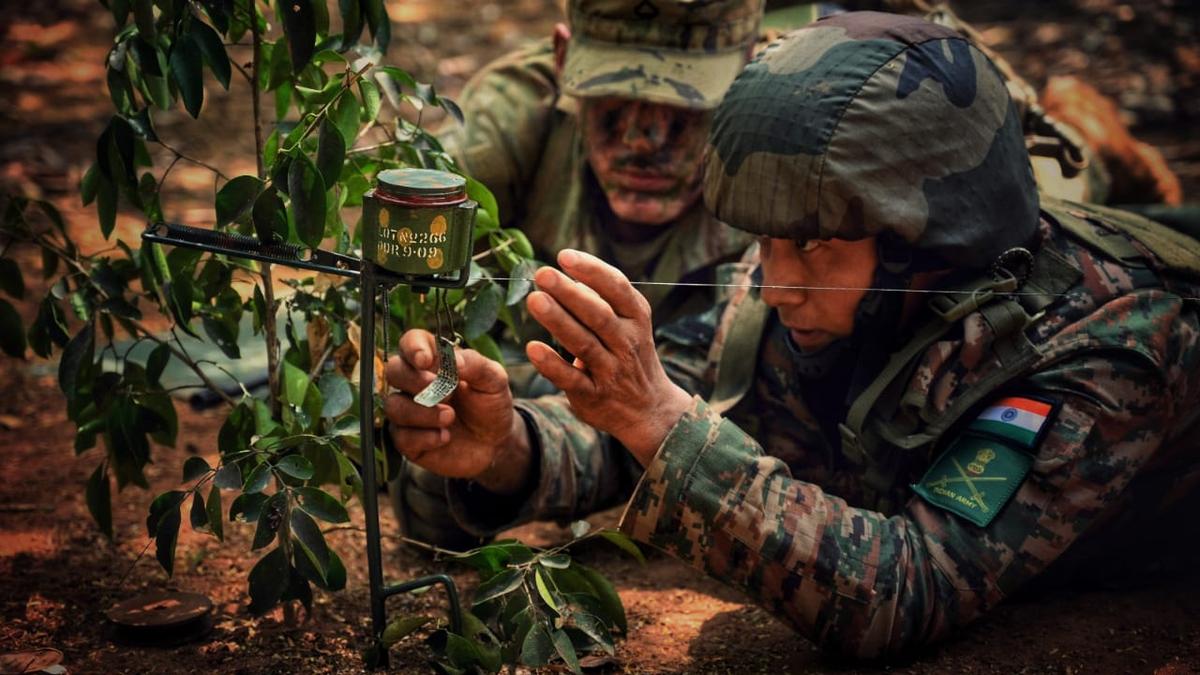
- 14 Jun 2025
In News:
The 8th edition of Exercise Shakti, a bilateral joint military exercise between India and France, is being held from 18 June to 1 July 2025 at La Cavalerie, France.
About Exercise Shakti
- Type: Joint military exercise between the Indian Army and French Army.
- Edition: 8th edition. The previous edition was hosted by India, as the exercise is biennial and conducted alternately in both countries.
- Venue (2025): La Cavalerie, France.
Objective and Significance
- Primary Aim: To enhance the joint military capability of both nations to conduct Multi-Domain Operations in sub-conventional conflict scenarios.
- Focus Areas:
- Developing interoperability in operations.
- Sharing best practices, tactics, techniques, and procedures.
- Strengthening military-to-military cooperation.
- Fostering bonhomie and camaraderie between the two armies.
Strategic Importance
- Exercise Shakti is part of the broader defence partnership between India and France, encompassing counter-terrorism, peacekeeping, and multi-domain coordination.
- It reflects India’s growing strategic engagements with like-minded global partners to address emerging security challenges.
Other India–France Joint Exercises
Name Domain Participants
Garuda Air Indian Air Force – French Air and Space Force
Varuna Naval Indian Navy – French Navy
Desert Knight Air Indo-French air warfare cooperation
Global Gender Gap Report 2025

- 14 Jun 2025
In News:
The 19th edition of Global Gender Gap Report 2025 was released by World Economic Forum (WEF).
Key Highlights:
Countries Covered: 148
Global Parity Status:
- Overall Gender Gap Closed: 68.8%
- Estimated Time to Full Parity: 123 years (at current pace)
Assessment Criteria (Four Dimensions):
- Economic Participation and Opportunity
- Educational Attainment
- Health and Survival
- Political Empowerment
The index uses a parity score (0–100%) to quantify gender equality, where 100% indicates full parity.
India’s Performance (Rank: 131/148)
- Parity Score: 64.1%
- South Asia Rank: Among the lowest; only Maldives (138) and Pakistan (148) rank below
- India’s 2024 Rank: 129 (slipped 2 positions in 2025)
Domain-wise Performance:
- Economic Participation and Opportunity
- Improved: Score increased by 0.9 percentage points to 40.7%
- Earned Income Parity: Rose from 28.6% to 29.9%
- Labour Force Participation: Stagnant at 45.9%
- Insight: Despite income parity gains, the gap in actual earnings and participation remains wide.
- Educational Attainment
- Near Parity Achieved: 97.1%
- Driven by rising female literacy and higher tertiary enrolment
- Challenge: Translating education into workforce participation remains limited.
- Health and Survival
- Marginal Gains: Improved parity in sex ratio at birth and healthy life expectancy
- However, overall life expectancy declined for both genders, muting the parity effect.
- Political Empowerment
- Significant Decline:
- Women MPs fell from 14.7% to 13.8%
- Women ministers dropped from 6.5% to 5.6%
- Trend: Continued decline from the 2019 peak of 30% female political representation
- Significant Decline:
South Asia and Global Comparison
- Bangladesh: Best performer in South Asia, ranked 24th globally (up by 75 positions)
- Other Neighbours:
- Bhutan (119),
- Nepal (125),
- Sri Lanka (130),
- Maldives (138),
- Pakistan (148 – last)
- Global Top 5 Countries:
- Iceland (Top for 16th year in a row)
- Finland
- Norway
- United Kingdom
- New Zealand
Key Global Insights
- Women in Workforce: 41.2% of global workforce
- Leadership Representation: Only 28.8% of leadership roles are held by women
- Despite post-pandemic recovery in gender parity, leadership gaps and decision-making roles remain major bottlenecks.
Implications for India
- The report underscores that gender parity is not just a social imperative, but also crucial for inclusive and resilient economic growth.
- India’s sluggish progress in political empowerment and gender wage gap highlight the need for institutional reforms, affirmative actions, and gender-sensitive policies in governance, employment, and leadership.
State of World Marine Fishery Resources 2025
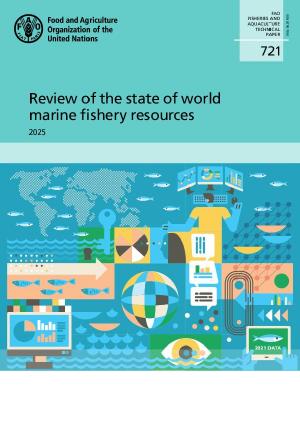
- 14 Jun 2025
In News:
The Food and Agriculture Organization’s (FAO) 2025 Report on the State of World Marine Fishery Resources, released during the UN Ocean Conference (UNOC3) in Nice, France, offers a comprehensive assessment of global fish stock sustainability, regional disparities, and governance challenges.
Key Findings:
- Global Sustainability: 64.5% of marine fishery stocks are fished within biologically sustainable levels, indicating modest improvement. However, 35.5% remain overexploited.
- Deep-Sea Species Vulnerability: Only 29% of deep-sea species are sustainably harvested, largely due to biological traits like slow growth, delayed maturity, and low reproductive rates. These characteristics impair recovery from overfishing.
- Migratory Shark Concerns: Of the 23 shark stocks assessed, 43.5% are overfished, especially in the tropical Indo-Pacific where they frequently become bycatch in tuna fisheries.
- Tuna Success Story: 87% of evaluated tuna and tuna-like species are sustainably fished, a result of effective regulation by Regional Fisheries Management Organizations (RFMOs).
- Regional Disparities: The northeast and southwest Pacific show high sustainability levels, while areas such as the Mediterranean and Black Sea lag, with only 35.1% of stocks sustainably managed.
- Data Gaps: Despite high reported sustainability (72.7%) in the eastern Indian Ocean, concerns remain due to insufficient species-specific stock assessments.
Governance and Policy Challenges:
- Illegal, Unreported and Unregulated (IUU) Fishing: Continues to threaten stock sustainability. IUU encompasses:
- Illegal: Breaches of domestic or international laws.
- Unreported: Failure to report or misreport catches.
- Unregulated: Conducted by vessels operating beyond jurisdictional authority, undermining conservation efforts.
- Subsidy Prohibitions (WTO Agreement):
- Bans financial support to vessels engaging in IUU fishing.
- Restricts subsidies for overfished stocks unless recovery measures are implemented.
- Prohibits aid for fishing in unregulated high seas zones.
Critical Analysis:
Positives:
- The rise in sustainable stocks signifies improved management awareness, particularly in regulated regions like the Pacific.
- Tuna fisheries demonstrate successful use of scientific tools—catch reporting and onboard observers—under RFMOs.
- The global survey included over 600 experts across 90 nations, lending credibility and robustness.
Negatives:
- Deep-sea stocks remain acutely overfished and biologically vulnerable.
- Shark species, integral to marine food webs, continue to suffer from bycatch and poor regulatory coverage.
- Monitoring shortfalls in Southeast Asia and African coasts prevent precise biomass estimation and conservation action.
- Weaker implementation and unregulated artisanal practices challenge sustainability in Mediterranean and Black Sea regions.
Recommendations for Sustainable Fisheries Governance:
- Empower RFMOs with real-time monitoring systems, electronic catch reporting, and observer programs.
- Adopt Ecosystem-Based Approaches that integrate climate resilience and biodiversity objectives.
- Strengthen Data Infrastructure in data-deficient regions with support from international bodies like the FAO and World Bank.
- Curtail Harmful Subsidies as per WTO protocols to reduce economic incentives driving overfishing.
- Promote Community Participation through co-management strategies and the development of Marine Protected Areas (MPAs).
Lokpal of India adopts new motto

- 13 Jun 2025
In News:
The Full Bench of the Lokpal of India has officially adopted a new motto — “Empower Citizens, Expose Corruption” — replacing the earlier Sanskrit phrase:
Old Motto: Ma Gridhah Kasyasvid Dhanam (Do not be greedy for anyone’s wealth)
The change aims to improve institutional visibility, enhance public engagement, and reaffirm the Lokpal’s mission to fight corruption by empowering the people.
About Lokpal of India
- Established under: Lokpal and Lokayuktas Act, 2013
- Came into force: 16 January 2014
- Headquarters: Vasant Kunj, New Delhi
- Nature: Independent statutory anti-corruption body
Composition
- Chairperson: Former Chief Justice of India or SC Judge
- Members: Up to 8 members
- 4 Judicial
- 4 Non-Judicial
- Appointed by: President of India on recommendation of a high-level Selection Committee
Jurisdiction
Lokpal can investigate allegations of corruption against:
- Prime Minister, Union Ministers, and Members of Parliament
- Central Government employees (Group A to D)
- Officials of organizations receiving govt. funding (full/partial)
- Entities receiving foreign donations over ?1 crore annually
Functions & Powers
- Investigates complaints under the Prevention of Corruption Act, 1988
- Can:
- Sanction prosecution
- Order attachment of properties
- Recommend suspension or transfer of officials
- Possesses powers of a civil court:
- Summon witnesses
- Seize documents
- Can supervise the CBI in referred cases
- Collaborates with other investigative and enforcement agencies
Why the New Motto Matters
The new motto, “Empower Citizens, Expose Corruption”, reflects:
- A citizen-centric approach to governance
- A renewed commitment to transparency, accountability, and institutional trust
- The evolving role of Lokpal in aligning public participation with anti-corruption efforts
Exercise KHAAN QUEST 2025
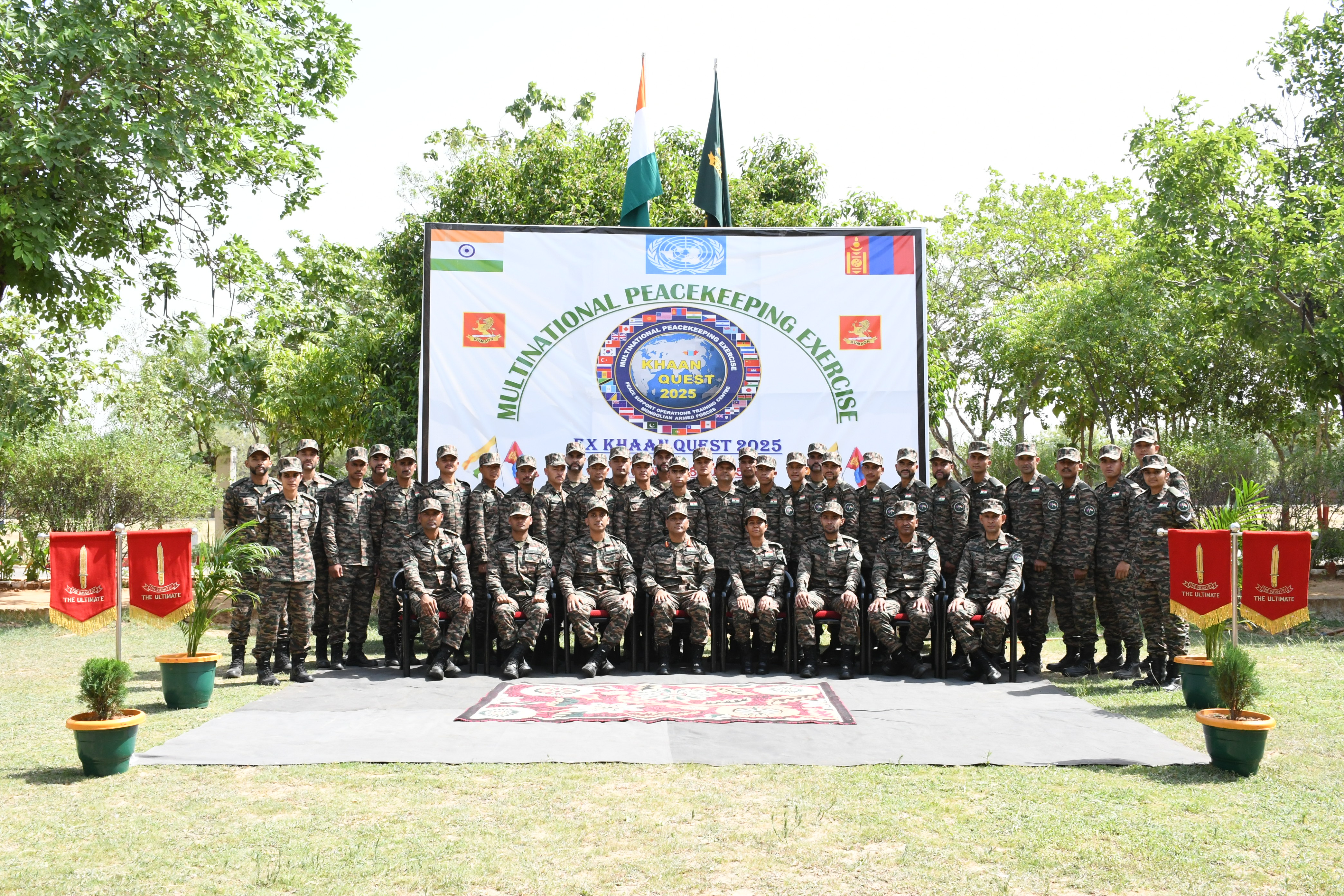
- 13 Jun 2025
In News:
The Indian Army contingent has arrived in Ulaanbaatar, Mongolia, to take part in the 22nd edition of the Multinational Peacekeeping Exercise KHAAN QUEST, scheduled from 14 to 28 June 2025.
About Exercise KHAAN QUEST
- Origin: Launched in 2003 as a bilateral exercise between the USA and Mongolian Armed Forces.
- Multinational Format: Expanded in 2006 to include multiple countries, now recognized as a major UN peacekeeping readiness exercise.
- 2024 Edition: Held from 27 July to 9 August in Mongolia.
- India’s Participation: Contingent Strength: 40 personnel, primarily from a Battalion of the Kumaon Regiment, supported by members from other arms and services.
Aim and Objectives
- Enhance readiness for UN peacekeeping operations under Chapter VII of the UN Charter.
- Promote interoperability, joint tactical planning, and multinational cooperation.
- Share best practices in peace support operations.
Key Tactical Drills
- Static and Mobile Checkpoint Setup
- Cordon and Search Operations
- Patrolling and Evacuation of Civilians from conflict zones
- Counter-IED procedures
- Combat First Aid and Casualty Evacuation
Significance
Exercise KHAAN QUEST serves as a critical platform for building military-to-military cooperation, strengthening international partnerships, and improving operational cohesion among troops from around the world.
International Organization for Marine Aids to Navigation (IALA)
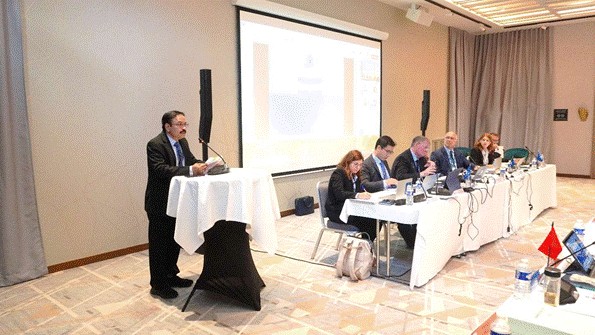
- 13 Jun 2025
In News:
India, as the Vice President of the International Organization for Marine Aids to Navigation (IALA), actively participated in the 2nd Session of the IALA Council, held in Nice, France.
What is IALA?
The International Organization for Marine Aids to Navigation (IALA) is a global intergovernmental technical body responsible for:
- Standardizing marine navigation aids (AtoN)
- Enhancing maritime safety
- Promoting environmental protection in marine navigation
Key Facts:
- Established: 1957 (as an NGO; became an IGO in 2024)
- Headquarters: Saint-Germain-en-Laye, near Paris, France
- Members: 39 countries
- Status: Transitioned to an Intergovernmental Organization in August 2024 after ratification by 30 states
India’s Role in IALA
India has been a Council Member since 1980, and was elected Vice President (2023–2027) during the 1st General Assembly in Singapore in 2023 — a significant recognition of India’s leadership in maritime affairs.
Major Indian Contributions:
- Development of Vessel Traffic Services (VTS) across 12 major ports
- Leadership in digital navigation aids and maritime innovation
- Promoting lighthouse heritage tourism
- Launching global training programs at the Kolkata Marine Navigation Training Institute
Highlights from the 2nd IALA Council Session
- Keynote: Outlined India’s achievements in integrating marine AtoN and future roadmap
- Technical Discussions:
- Standardization of AtoN and VTS systems
- Harmonized IoT protocols for visual AtoN
- Maritime Service Registry development
- Lighthouse heritage conservation
- Planning IALA’s global activity schedule for 2025–2026
India to Host Key IALA Events
- 3rd IALA General Assembly – December 2025, Mumbai
- 21st IALA Conference – 2027, Mumbai
This reflects global confidence in India’s technical capabilities and strategic importance in the maritime domain.
Significance:
- Strategic Leadership: Reinforces India’s influence in international maritime governance.
- Digital Maritime Innovation: India is contributing to cutting-edge technologies like IoT protocols and digital AtoN.
- Global Capacity Building: Hosting and training initiatives bolster the global maritime workforce.
- Cultural Diplomacy: Lighthouse tourism and heritage preservation align technology with history.
India’s Social Security coverage reaches 64.3% in 2025
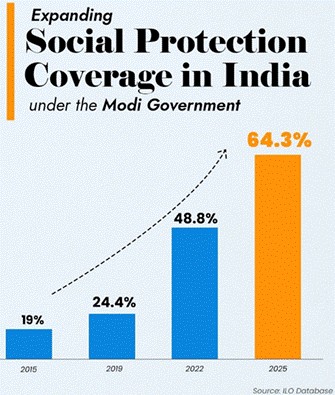
- 13 Jun 2025
In News:
According to the latest data from the International Labour Organization’s (ILO) ILOSTAT database, India’s social security coverage has increased from 19% in 2015 to 64.3% in 2025, an unprecedented 45 percentage point surge over the past decade.
What is Social Security?
Social security (or social protection) refers to systems and policies that protect individuals and households from:
- Income loss (e.g. old age, unemployment, disability)
- High healthcare costs
- Social vulnerability (e.g. poverty, maternity, sickness)
It is built on three pillars:
- Social Assistance – Non-contributory support (e.g. food, housing)
- Social Insurance – Contributory programs (e.g. pensions, health insurance)
- Labour Market Programs – Employment schemes to build self-reliance
Key Highlights from ILOSTAT 2025
- India’s social security coverage jumped to 64.3%, up from 19% in 2015 – a 45 percentage point increase in 10 years.
- This means over 94 crore (940 million) people are now covered under at least one form of social protection.
- India now ranks 2nd globally in terms of population covered by social security.
- It is also the first country to update its 2025 social protection data in the ILOSTAT global database, showcasing its progress in digital governance and transparency.
Major Social Protection Initiatives Driving the Surge
India’s massive expansion in social coverage is due to a wide range of targeted schemes, including:
Pension & Insurance Schemes
- Atal Pension Yojana (APY): Pension of ?1,000–?5,000/month for informal workers aged 18–40.
- PM Shram Yogi Maan-Dhan Yojana (PM-SYM): Contributory pension for unorganized workers with 50% government support.
- PM Jeevan Jyoti Bima Yojana (PMJJBY): ?2 lakh life insurance for people aged 18–50.
- PM Suraksha Bima Yojana (PMSBY): Accident insurance of ?2 lakh for ages 18–70.
Healthcare & Nutrition
- Ayushman Bharat – PMJAY: ?5 lakh health cover for low-income families.
- Janani Suraksha Yojana: Maternity care for pregnant women.
- PM POSHAN (formerly Mid-Day Meal Scheme): Nutritional support to schoolchildren.
Income, Housing & Food Security
- MGNREGA: Guaranteed 100 days of wage employment annually in rural areas.
- PM Kisan Samman Nidhi: ?6,000/year income support to small and marginal farmers.
- Public Distribution System (PDS) under NFSA: Subsidized food grains to eligible households.
- PM Awaas Yojana – Gramin (PMAY-G): Pucca homes with basic amenities for rural poor.
Significance
- Poverty Reduction: Enhanced safety net for vulnerable populations.
- Inclusive Growth: Formal inclusion of informal sector workers.
- Digital Governance: Use of technology for efficient delivery (e.g., Aadhaar, DBT).
- Resilience Building: Helps households withstand economic shocks (e.g., pandemics, job loss).
CROPIC: A New AI-Driven Crop Study Scheme
- 13 Jun 2025
In News:
The Ministry of Agriculture and Farmers Welfare plans to launch CROPIC, a study to gather crop information using field photographs and AI-based models.
What is CROPIC?
CROPIC stands for Collection of Real Time Observations & Photo of Crops. It is a new initiative by the Ministry of Agriculture and Farmers’ Welfare aimed at studying crops through photographs and artificial intelligence (AI). The core objective is to monitor crop health and assess mid-season losses using images captured at multiple stages of the crop cycle.
Why is CROPIC significant?
CROPIC plays a pivotal role in modernizing and digitizing crop monitoring under the Pradhan Mantri Fasal Bima Yojana (PMFBY), India’s flagship crop insurance scheme.
Significance:
- Improved Loss Assessment: Traditional methods of crop loss assessment are time-consuming and subjective. CROPIC introduces AI-based analysis for faster and more objective decision-making.
- Automation of Compensation: It will help automate claim processes, ensuring faster payments to farmers in case of crop failure.
- Rich Crop Signature Database: Repeated field observations will build a valuable dataset of crop images over time, useful for future agricultural planning and risk management.
- Farmer Involvement: By crowdsourcing photographs directly from farmers, CROPIC also encourages their direct participation in data collection.
How will CROPIC work on the ground?
- Data Collection via App:
- A mobile app developed by the ministry will be used.
- Farmers and officials will take photos of crops 4–5 times during a crop’s life cycle.
- AI-Based Analysis:
- Photos will be processed on a cloud-based AI platform.
- The model will identify crop type, growth stage, health condition, damage, and loss extent.
- Visualization and Monitoring:
- A web-based dashboard will visualize crop status and damage patterns for stakeholders.
- Use in Insurance Claims:
- The app will also be used by officials to collect photo evidence for PMFBY claims, helping streamline compensation payouts.
Project Timeline:
- Pilot Phase:
- Begins with Kharif 2025 and Rabi 2025-26.
- Will cover at least 50 districts per season, spanning various agro-climatic zones and major crops.
- Full Roll-Out: After initial R&D, nationwide implementation is planned from 2026 onwards.
Funding and Support:
- Funded through the Fund for Innovation and Technology (FIAT) under PMFBY.
- FIAT has a total allocation of ?825 crore for various tech-driven agricultural initiatives.
Understanding Tourette Syndrome
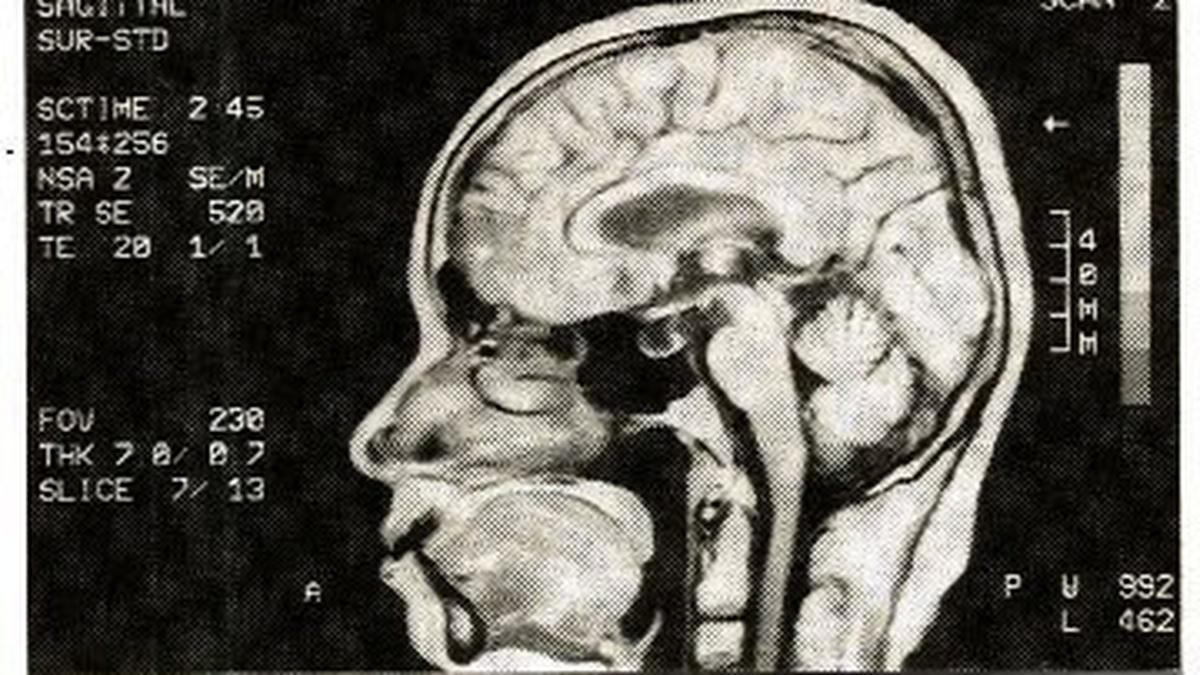
- 12 Jun 2025
In News:
Tourette Syndrome (TS) is a neurodevelopmental disorder that typically begins in early childhood, often between the ages of 2 and 15, with an average onset around six years. Affecting approximately 0.3% to 1% of the global population, TS is more prevalent among boys than girls. Despite its neurological basis, it remains poorly understood and frequently misdiagnosed, particularly in school settings where symptoms are mistaken for behavioural issues.
Nature and Classification of Tics
Tourette Syndrome is characterised by tics—sudden, repetitive, and involuntary movements or vocalisations. These are classified as:
- Simple tics, such as eye blinking, facial grimacing, throat clearing, or sniffing, involve a single muscle group or sound.
- Complex tics are more coordinated, involving actions like hopping, touching objects, or uttering phrases. Rarely, individuals may display coprolalia, the involuntary use of obscene language.
Tics often intensify with stress or excitement, diminish during calm periods, and usually disappear in deep sleep. External stimuli such as excessive screen exposure have also been linked to an increase in tics, particularly in children.
Causes and Co-morbidities
While the exact cause of TS remains unknown, researchers point to a combination of genetic predisposition and neurobiological factors, including abnormalities in brain regions such as the basal ganglia and frontal lobes. Environmental triggers—like low birth weight, perinatal complications, and post-infectious conditions (e.g., streptococcal infections)—may also contribute.
Tourette’s often coexists with other conditions such as Attention Deficit Hyperactivity Disorder (ADHD), Obsessive Compulsive Disorder (OCD), anxiety, depression, and learning disabilities. The presence of these co-morbidities complicates diagnosis and management.
Management and Treatment Approaches
Treatment is individualised and not always pharmacological. Many children with mild, non-disruptive tics do not require medication. Instead, Cognitive Behavioural Therapy (CBT) and behavioural interventions have shown significant efficacy. These therapies help children manage their symptoms while also training families to provide supportive environments that reduce stress and tic frequency.
Medications may be considered in severe cases where tics hinder daily functioning. Importantly, suppression or punishment of tics is counterproductive, often exacerbating symptoms due to built-up tension.
Social Stigma and the Need for Awareness
The primary challenge in managing TS lies not in the disorder itself, but in the societal misunderstanding surrounding it. Children with TS are often labelled as attention-seeking or disruptive, leading to social isolation and emotional distress. As seen in the case of a child from Kochi, delayed diagnosis and stigma worsened his condition until it was recognised as Tourette’s.
Educating teachers, parents, and peers is crucial. Early diagnosis, empathetic engagement, and inclusive school environments are essential to ensuring that children with TS are treated with dignity and compassion.
Rediscovery of the Eurasian Otter in Kashmir
- 12 Jun 2025
In News:
After being presumed extinct in the Kashmir Valley for nearly three decades, the Eurasian otter (Lutra lutra) has been spotted again in the Lidder River in Srigufwara, South Kashmir. This rare sighting rekindles hope for the revival of the Valley’s aquatic biodiversity.
About Eurasian Otter:
- Common Names: Eurasian otter, European otter, Common otter, Old-World otter
- Local Name in Kashmir: Vuder
- Type: Semi-aquatic carnivorous mammal
- Distribution:
- Widely spread across Europe, the Middle East, Northern Africa, and Asia (from Eastern Russia to China).
- In India, found in northern, northeastern, and southern regions.
- In Kashmir, historically abundant in Dal Lake, Dachigam streams, Rambiara stream, and the Lidder River.
Habitat & Features:
- Habitat:
- Occupies diverse freshwater and coastal ecosystems—lakes, rivers, marshes, swamp forests, and mountain streams.
- In the Indian subcontinent, prefers cold hill and mountain waters.
- Physical Traits & Adaptations:
- Sleek brown fur (lighter underneath), long streamlined body, short legs, and thick tail.
- Aquatic adaptations:
- Webbed feet
- Ability to close ears and nostrils underwater
- Dense fur trapping air for insulation
- Excellent vision, hearing, and olfactory senses.
- Behavior: Elusive, solitary, and primarily nocturnal.
Conservation Concerns:
- Primary Threats:
- Water pollution degrading habitats
- Hunting for fur, historically significant in Kashmir
- Conservation Status:
- IUCN Red List: Near Threatened
- Wildlife Protection Act, 1972 (India): Schedule II
- CITES: Appendix I
Sant Kabirdas
- 12 Jun 2025
In News:
11th June 2025 marked the 648th birth anniversary of Sant Kabirdas, one of India’s most revered 15th-century Bhakti saints.
Place of Birth: Varanasi, Uttar Pradesh
Birth Period: Circa 1440 CE, raised in a Muslim weaver family
Philosophy and Teachings
- Nirguna Bhakti: Kabir rejected idol worship and sectarian divisions, instead preaching devotion to a formless, universal God (Nirguna Brahman).
- Social Reform: He denounced casteism, rituals, and blind faith, stressing ethical conduct, humility, and self-realization.
- Inner Divinity: He believed God resides within and taught seekers to seek truth through introspection (Antar-drishti) rather than temple rituals.
- Language and Style:
- Composed in Sant Bhasha, a blend of local dialects understood across religions.
- Created Ulatbansi verses — paradoxical or "upside-down sayings" — challenging conventional wisdom.
Literary Legacy
- Major Works: Bijak, Sakhi Granth, Kabir Granthavali, Anurag Sagar
- Scriptural Inclusion:
- His verses appear prominently in the Adi Granth Sahib compiled by Guru Arjan Dev.
- Adopted by various traditions:
- Kabir Bijak (Kabirpanth, UP)
- Kabir Granthavali (Dadupanth, Rajasthan)
Impact and Influence
- Kabir Panth: A spiritual sect founded on his teachings, still active in North India.
- Sikhism: Deeply influenced Guru Nanak; Kabir’s dohas are integrated into Guru Granth Sahib.
- Cross-Religious Appeal: Respected by both Hindus and Muslims, he is a symbol of India’s syncretic spiritual culture.
- Other Sects: Influenced Dadu Panthis and Nirguna Bhakti traditions across India.
Contemporary Relevance
- Religious Harmony: In a climate of polarization, Kabir’s teachings offer a path of unity and spiritual inclusivity.
- Social Justice: His resistance to caste hierarchy echoes India’s constitutional values of equality and dignity.
- Sustainable Living: His emphasis on simplicity and contentment aligns with ecological and minimalist principles.
- Spiritual Humanism: He stressed conduct over ritual, making his message resonate across belief systems in today’s pluralistic society.
State of the World Population Report 2025
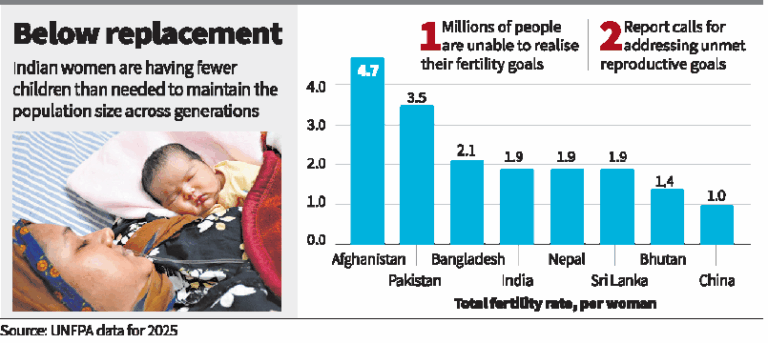
- 12 Jun 2025
In News:
According to the United Nations Population Fund’s (UNFPA) State of the World Population Report 2025, India’s population has reached 146.39 crore as of April 2025, surpassing China (141.61 crore) to remain the world’s most populous country. Importantly, India’s Total Fertility Rate (TFR) has declined to 1.9, falling below the replacement level of 2.1.
Key Highlights:
Population Growth and Future Projections
- Current population (2025): 146.39 crore
- Projected peak: 170 crore in the next 40 years, after which population will begin to decline.
- Working-age population (15–64 years): 68%
- Youth population:
- 0–14 years: 24%
- 10–19 years: 17%
- 10–24 years: 26%
- Elderly population (65+ years): 7% (expected to rise steadily)
Fertility Trends and the Real Crisis
What is TFR?
- Total Fertility Rate measures the average number of children a woman is expected to have in her lifetime.
- Replacement level TFR: 2.1 (to maintain population size across generations)
- India’s TFR in 2025: 1.9, marking a demographic shift toward stabilization.
Fertility Divergence Across States:
- High TFR states: Bihar, Uttar Pradesh, Jharkhand
- Low TFR states: Kerala, Tamil Nadu, Delhi – already below replacement level
The Real Fertility Crisis (UNFPA View):
- The true concern is unmet fertility goals, not overpopulation or underpopulation.
- Barriers to achieving desired family size:
- Financial constraints (40%)
- Job insecurity (21%) and housing issues (22%)
- Lack of childcare (18%)
- Social/family pressures (19%)
- Modern concerns like climate change and shifting gender norms
Structural & Social Challenges
- Persisting inequalities in access to reproductive health across caste, income, and regional lines
- Youth bulge in LMICs (including India) offers demographic dividend but needs skill-building and employment opportunities
- Ageing population calls for future-proof policies on healthcare, pensions, and social security
Life Expectancy & Data Reliability
- Life expectancy (2025):
- Men: 71 years
- Women: 74 years
- Data drawn from: DHS, MICS, World Population Prospects 2024, Family Planning Indicators (2024)
- India’s decennial Census delayed to 2027, limiting official data updates since 2011
UNFPA Recommendations for India:
- Expand SRH (Sexual & Reproductive Health) Services: Universal access to contraception, safe abortion, and infertility care
- Tackle Structural Barriers: Affordable housing, childcare, flexible work policies, and women’s education
- Promote Reproductive Agency: Ensure informed choices on family planning for all, including LGBTQIA+ and unmarried individuals
- Balance Youth & Elderly Policies: Invest in youth employability while preparing for ageing-related challenges
Blue NDC Challenge
- 12 Jun 2025
In News:
At the Third United Nations Ocean Conference (UNOC3) held in Nice, France (June 9–13, 2025), Brazil and France launched the Blue NDC Challenge — a major international initiative to integrate ocean-based climate solutions into Nationally Determined Contributions (NDCs) under the Paris Agreement, in the lead-up to UNFCCC COP30, to be held in Belem, Brazil.
What is the Blue NDC Challenge?
The Blue NDC Challenge is a multilateral climate action initiative urging countries to incorporate ocean-centric measures into their updated NDCs. It aims to enhance climate mitigation and adaptation by recognizing the vital role of oceans and coastal ecosystems in addressing the climate crisis.
- Launched by: Brazil and France
- Platform: UNOC3 (June 2025)
- Target: Updated NDCs due for 2035 (deadline: February 10, 2025)
Participating Countries (as of June 2025):
- Founding: Brazil, France
- Joined: Australia, Fiji, Kenya, Mexico, Palau, Seychelles
Objectives and Key Features:
- Ocean-Integrated NDCs
- Include marine ecosystems, coastal zones, mangroves, coral reefs, and salt marshes in national climate plans.
- Integrate Marine Spatial Planning (MSP) and Integrated Coastal Zone Management (ICZM).
- Sustainable Blue Economy
- Promote climate-resilient fisheries and carbon-smart aquaculture.
- Expand clean ocean energy: offshore wind, wave, and tidal power.
- Decarbonization and Adaptation
- Phase out offshore oil and gas projects.
- Reduce emissions in shipping, seafood value chains, and coastal infrastructure.
- Boost resilience in maritime sectors vulnerable to climate risks.
- Restoration and Conservation
- Focus on the restoration of mangroves, salt marshes, and coral reefs—which are effective carbon sinks and natural buffers against sea-level rise.
- Global Partnerships and Support Mechanisms
- Supported by:
- Global Mangrove Alliance
- UN High-Level Climate Champions
- World Resources Institute (WRI)
- Ocean Breakthroughs (Marrakech Partnership for Global Climate Action)
- Supported by:
Significance and Leadership:
- Brazil’s Climate Leadership
- Brazil’s 2035 NDC (submitted in November 2024) includes, for the first time, a dedicated Ocean and Coastal Zones component.
- Brazil is also investing in marine conservation, supported by a $6.8 million fund from Bloomberg Philanthropies (June 8, 2025).
- Expert Insights:
- Mangroves sequester carbon 10 times faster than terrestrial forests.
- Including oceans in NDCs can unlock greater political and financial support, according to Conservation International and WRI.
- Emission Reduction Potential:
- According to WRI, ocean-based solutions can contribute up to 35% of the global emissions reduction needed to stay within the 1.5°C limit.
Relevance for India and the World:
- With India’s vast coastline and diverse marine ecosystems, incorporating ocean-based climate actions into its NDCs could enhance climate resilience, especially for coastal communities.
- Global focus on oceans marks a shift towards holistic climate policy, integrating land, sea, and people-centric approaches.
Discovery of Spathaspina noohi
- 11 Jun 2025
In News:
A significant addition to India's rich biodiversity has emerged from the forests of Meghalaya with the discovery of a new beetle species, Spathaspina noohi. This unique species not only adds to the biological inventory of the region but also necessitated the creation of an entirely new genus, highlighting the ecological and taxonomic uniqueness of the organism.
Location of Discovery
- The beetle was found in the Umran area of Ri Bhoi district, Meghalaya.
- Elevation: 781 metres above sea level.
- The discovery was made by S. S. Anooj, entomologist from Kerala Agricultural University, and formally described by B. Ramesha in the international journal Zootaxa.
Taxonomic Significance
- Spathaspina noohi belongs to the Curculionidae family, commonly known as weevils, which includes over 60,000 species globally.
- Due to a highly distinctive sword-like spine on its back, it was classified under a new genus—Spathaspina, a name derived from Latin:
- Spatha = sword
- Spina = spine
Subfamily and Tribe Characteristics
- The beetle falls under the Ceutorhynchinae subfamily, which includes about 1,300 species worldwide.
- The subfamily is characterized by:
- Compact, robust body
- Ability to tuck their snout (rostrum) between the front legs when resting
- A visible back structure (mesanepimera)
- Within this subfamily, the beetle is linked to the tribe Mecysmoderini, comprising 8 genera and 107 species. This tribe is noted for its thoracic spines and specialized antenna structures, mostly found in South and Southeast Asia.
Ecological Role of Weevils
While many weevils are considered agricultural pests, others, including Spathaspina noohi, play vital ecological roles such as:
- Controlling invasive plant species
- Maintaining ecosystem balance
Geographical Distribution of Ceutorhynchinae
- These beetles are present across most continents except:
- New Zealand
- Oceania
- Antarctica
- Southern parts of South America
- Their highest diversity is noted in the Palaearctic Region (Europe, North Africa, parts of Asia), followed by the Oriental Region (South and Southeast Asia).
Commemorative Naming
The species is named in honour of P. B. Nooh, IAS, Director of Tourism, Government of Kerala. This acknowledges his contribution to eco-tourism and sustainable development, symbolizing the interconnection between biodiversity conservation and responsible tourism.
SEZ Reforms to Promote Semiconductor & Electronics Manufacturing
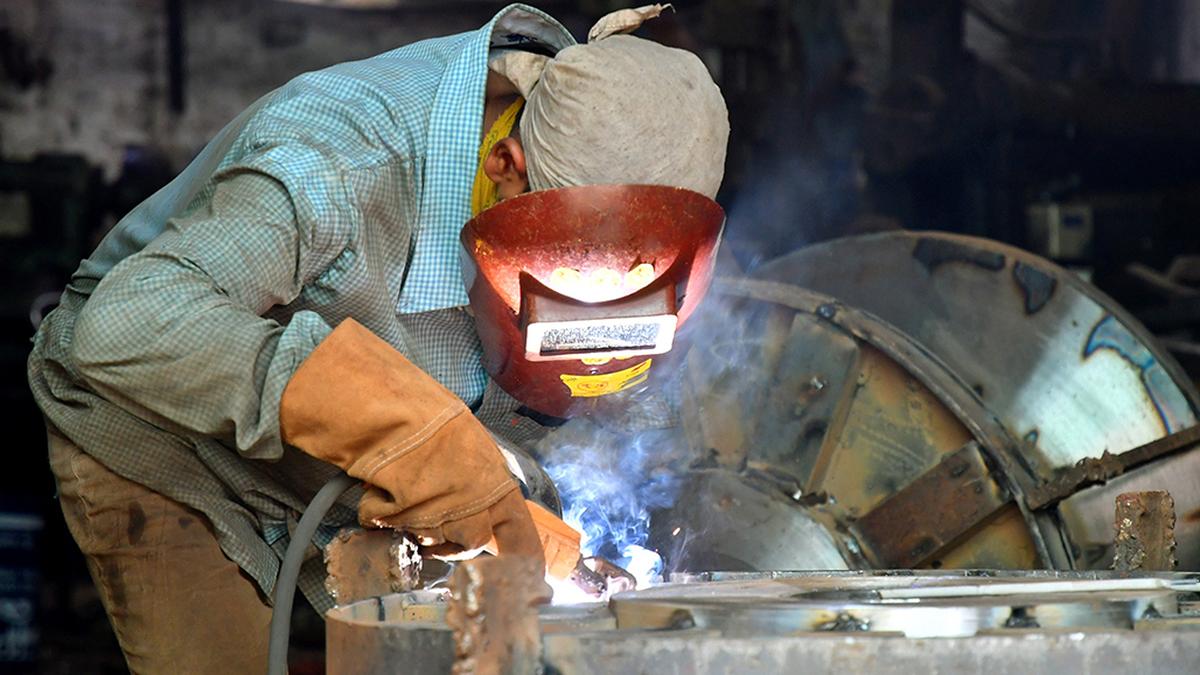
- 11 Jun 2025
In News:
Recently, the Department of Commerce notified key amendments to the SEZ Rules, 2006, to boost semiconductor and electronics component manufacturing. These reforms address the high capital intensity and import dependency of the sector and aim to attract pioneering investments.
Key Rule Amendments:
Rule 5: Minimum Land Requirement Relaxed
- What Changed: Minimum land required for SEZs dedicated to semiconductor/electronics manufacturing reduced from 50 hectares to 10 hectares.
- Why it matters
- Eases land acquisition
- Makes SEZs more feasible, especially in smaller industrial clusters
- Encourages pioneering investments in land-scarce regions
Rule 7: Encumbrance-Free Land Norm Relaxed
- What Changed: SEZ land no longer required to be entirely encumbrance-free, if it is mortgaged/leased to the Central or State Government or authorized agencies.
- Why it matters
- Removes a major legal hurdle in land approvals
- Accelerates SEZ project clearance and development timelines
Rule 18: Domestic Supply Allowed from SEZ Units
- What Changed: Semiconductor/electronics SEZ units can now sell products in the Domestic Tariff Area (DTA) after paying applicable duties.
- Why it matters
- Greater market access
- Enhances revenue and profitability
- Breaks away from traditional export-only SEZ model
Rule 53: Clarity on Free-of-Cost Goods in NFE Calculation
- What Changed: Free-of-cost goods received or supplied will now be included in Net Foreign Exchange (NFE) calculations, using customs valuation rules.
- Why it matters
- Encourages R&D and contract manufacturing
- Promotes transparent reporting of value addition
- Aligns with global manufacturing practices
Significance of Reforms:
- Tailored for High-Tech Sectors: Recognises the long gestation and capital-intensive nature of semiconductor and electronic component industries.
- Encourages Domestic and Global Investment: Makes India an attractive destination for global electronics giants.
- Enables Domestic Market Integration: By allowing DTA sales, it expands market access for SEZ-based units.
- Supports India's Semiconductor Mission: Complements existing initiatives like the Semicon India Programme.
National Investment and Infrastructure Fund (NIIF)
- 11 Jun 2025
In News:
Union Finance Minister chaired the 6th Governing Council (GC) meeting of NIIF in New Delhi. The Council urged NIIF to enhance its global presence, diversify funding sources, and attract international investors by leveraging its sovereign-backed model.
About National Investment and Infrastructure Fund
- A government-anchored investment platform to mobilize long-term institutional capital for infrastructure and strategic sectors.
- Operates as a sovereign wealth fund (SWF)-linked asset manager with independent governance.
- Established: 2015 (Union Budget 2015–16)
- Headquarters: Mumbai
- Nodal Ministry: Ministry of Finance (Department of Economic Affairs)
Functions & Objectives:
- Capital Mobilization: Attract domestic & global institutional investors.
- Investment Management: Deploy equity in commercially viable infrastructure.
- Strategic Partnerships: Collaborate with global sovereign wealth & pension funds.
- Policy Alignment: Support national initiatives like Make in India, green energy, and digital infrastructure.
Key Features:
- Public-Private Structure:
- 49% Government of India
- 51% Global and domestic institutional investors (e.g., ADIA, Temasek, CPPIB)
- SEBI-Registered AIF: Category II Alternative Investment Fund (AIF)
- Assets Under Management (AUM): ?30,000+ crore
- Capital Catalysed: ?1.17 lakh crore
- CEO & MD: Sanjiv Aggarwal (since Feb 2024)
Funds under NIIF:
- Master Fund: Core infrastructure (ports, airports, data centres, logistics)
- Private Markets Fund (PMF): Fund of funds model
- India-Japan Fund: Focused on climate action and sustainability
- Strategic Opportunities Fund: Growth equity in strategic sectors
Governing Council (GC) of NIIF:
- Chair: Union Finance Minister (currently Nirmala Sitharaman)
- Members include Finance Secretary, DEA/DFS officials, SBI Chairman, private sector leaders.
- Provides strategic guidance on:
- Fundraising
- Global positioning
- Operationalisation of new funds
- Annual review of performance
Key Outcomes of the 6th GC Meeting (2024–25):
- Proactive Global Outreach: GC urged NIIF to enhance its global presence and professionalise international engagement.
- Diversified Fundraising: Encouraged exploring multiple funding sources beyond traditional sovereign investors.
- Private Markets Fund II (PMF II): Target corpus: $1 billion; first closing imminent.
- Bilateral Fund with the USA: Under discussion to foster cross-border infrastructure investments.
- Greenfield Investment Success: Master Fund investments directed toward ports, logistics, airports, data centres.
- Strong Global Partnerships: Includes ADIA, Temasek, Ontario Teachers', CPPIB, AIIB, ADB, JBIC, and NDB.
- Annual Meetings: GC to convene once every year to review and guide NIIF’s evolving role.
Bhagwan Birsa Munda
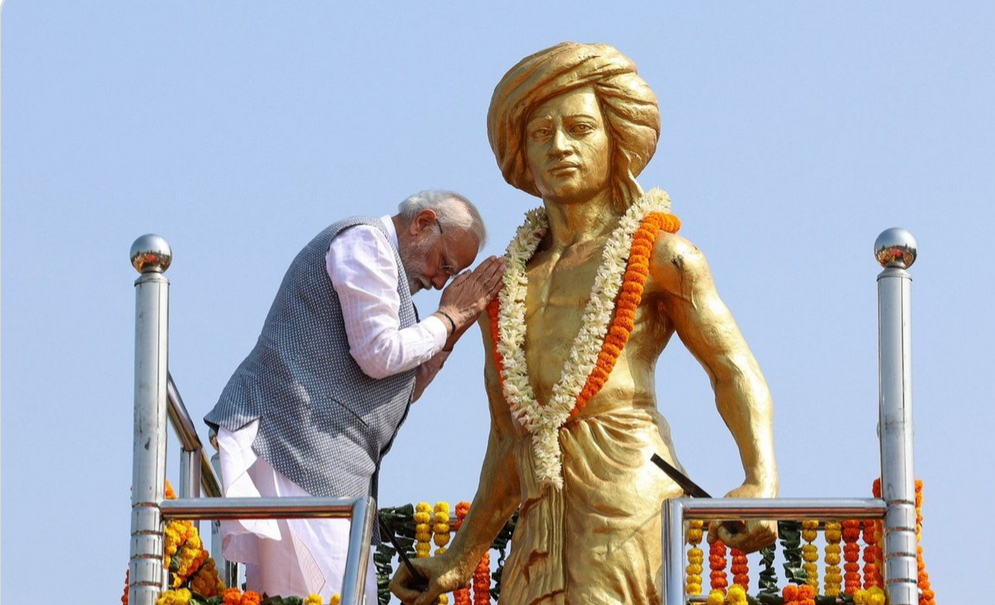
- 11 Jun 2025
In News:
On his 125th death anniversary (Balidan Diwas), the Prime Minister of India paid tribute to Bhagwan Birsa Munda, hailing his pioneering role in tribal empowerment and anti-colonial resistance.
Early Life and Identity
- Born: 15 November 1875, Ulihatu, Chotanagpur Plateau (now in Jharkhand).
- Tribe: Munda.
- Title: Revered as “Dharti Aaba” (Father of the Earth).
- Education: Attended Christian missionary schools in Chaibasa; later rejected colonial influence and converted to Vaishnavism, blending it with tribal spirituality.
- Founder of: The Birsait sect, advocating moral reform and cultural awakening among Adivasis.
Role in Freedom Struggle & Tribal Mobilisation
Resistance Against Exploitation:
- Zamindari System: Opposed British-imposed land systems that dismantled the Khuntkatti tribal land tenure, dispossessing tribals and reducing them to bonded labourers.
- Beth Begari: Led resistance against forced labour and revenue policies.
- Forest Rights: Fought against British encroachment and resource extraction in forests.
Cultural and Spiritual Renaissance:
- Condemned social evils like black magic and alcoholism.
- Mobilised tribals using tribal songs, attire, drums, and community gatherings.
- Advocated tribal self-rule and cultural pride against the oppression by Dikus (outsiders).
Ulgulan Movement (1895–1900): The Great Tumult
- Nature: A widespread anti-colonial rebellion across present-day Jharkhand, Odisha, and Bengal.
- Strategy: Guerrilla warfare, targeting British outposts, churches, and police stations.
- Slogan: “Abua Raj setar jana, Maharani Raj tundu jana” (Let the rule of our people begin, let the Queen’s rule end).
- Emphasized a vision of egalitarian tribal raj rooted in indigenous governance systems.
Arrest, Martyrdom, and Legacy
- Arrested: 1895; Died: 9 June 1900 in Ranchi Jail under mysterious circumstances.
- Though the rebellion was crushed, it led to the Chotanagpur Tenancy Act, 1908, securing tribal land rights.
Recognition and Legacy
- Declared as “Bhagwan” (Lord) by tribal communities for his cultural leadership and resistance.
- Institutions named in his honour: Birsa Agricultural University, Birsa Institute of Technology, etc.
- November 15 (birth anniversary) declared Janjatiya Gaurav Diwas (Tribal Pride Day) in 2021 by the Government of India.
- Symbol of tribal assertion, indigenous identity, and early resistance to colonialism in India.
India’s Breakthrough in Heeng Cultivation
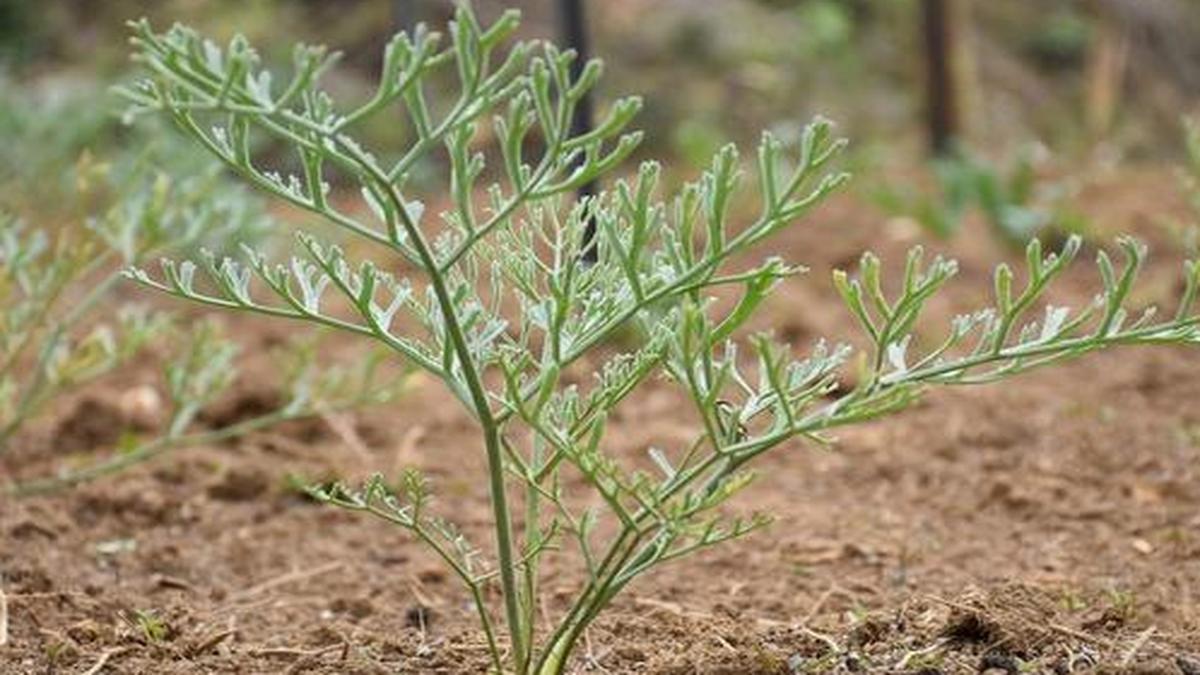
- 11 Jun 2025
In News:
CSIR-IHBT reported the first flowering and seed setting of heeng in Palampur (1,300 m above sea level). This confirmed the successful acclimatisation and domestication of Ferula assa-foetida in Indian agro-climatic conditions.
This milestone is significant because:
- It proves India’s capability to cultivate heeng domestically.
- It completes the reproductive cycle—a prerequisite for long-term commercial production and sustainability.
- It expands the scope of cold-arid agriculture beyond traditional zones.
Background:
- Heeng or asafoetida (Ferula assa-foetida) is a perennial herb, long revered in Indian culinary and medicinal traditions.
- It is widely mentioned in ancient texts such as the Mahabharata, Charaka Samhita, Pippalada Samhita, and the works of Panini, known for its digestive, aromatic, and therapeutic properties.
- Despite being the world’s largest consumer of heeng, India was entirely import-dependent until the early 2010s, sourcing it mainly from Afghanistan, Iran, and Uzbekistan.
- This was because the species Ferula assa-foetida, the true source of asafoetida, was not found in India—only related species like Ferula jaeschkeana (Himachal Pradesh) and Ferula narthex (Kashmir and Ladakh) existed, which do not yield the culinary resin.
Botanical & Climatic Requirements:
- Plant Type: Perennial, takes about 5 years to mature and flower.
- Soil: Prefers sandy, well-drained soil with low moisture.
- Climate: Thrives in cold, arid environments, requires annual rainfall below 200–300 mm.
- Temperature Range: Grows best in 10–20°C, tolerates up to 40°C, and survives winter lows of –4°C.
- Propagation: The oleo-gum resin (asafoetida) is extracted by making incisions in the plant’s fleshy taproot and rhizome, yielding a latex that hardens into a gum, which is dried into powder or crystal form.
The Indigenous Cultivation Effort:
In a major step toward self-reliance, the Council of Scientific and Industrial Research – Institute of Himalayan Bioresource Technology (CSIR-IHBT) in Palampur, Himachal Pradesh, initiated India’s first project for indigenous heeng cultivation.
- Seed Procurement: Between 2018–2020, IHBT coordinated with agencies and suppliers in Iran, Afghanistan, Uzbekistan, Tajikistan, and South Africa. Seeds were finally procured from Iran and Afghanistan with import approvals and quarantine protocols handled by ICAR-National Bureau of Plant Genetic Resources (NBPGR).
- Research and Trials: Researchers developed germination protocols for seeds with low viability and conducted trials at IHBT Palampur and Ribling in Lahaul-Spiti to determine altitude-specific suitability and agronomic practices.
- Milestone Event: On October 15, 2020, the first heeng sapling was planted in a farmer’s field in Kwaring village, Lahaul Valley—marking the start of India’s heeng cultivation journey.
Expansion and Institutional Support:
- New Cultivation Zones: From cold desert areas, cultivation extended to mid-hill regions such as Janjheli in Mandi. Demonstration plots and farmer training programmes were established across Lahaul-Spiti, Kinnaur, Mandi, Kullu, and Chamba.
- Early Adopter Villages:
- Lahaul & Spiti: Madgran, Salgran, Beeling, Keylong
- Mandi: Janjehli, Kataru, Majhakhal, Karsog
- Kinnaur: Kalpa, Hango, Reckong Peo, Maling
- Kullu: Kotla–Banjar, Bagsaid, Dhaugi–Sainj
- Chamba: Pangi, Bharmour, Tooh, Mahala
- Heeng Germplasm Resource Centre: Established at IHBT Palampur in March 2022, this national hub oversees research, conservation, seed production, and propagation of heeng.
- Tissue Culture Innovation: A dedicated lab was developed to scale up propagation using modern techniques, supported by the Government of Himachal Pradesh. Ecological niche modelling using GPS and climate data helped map ideal cultivation areas.
Myotis himalaicus
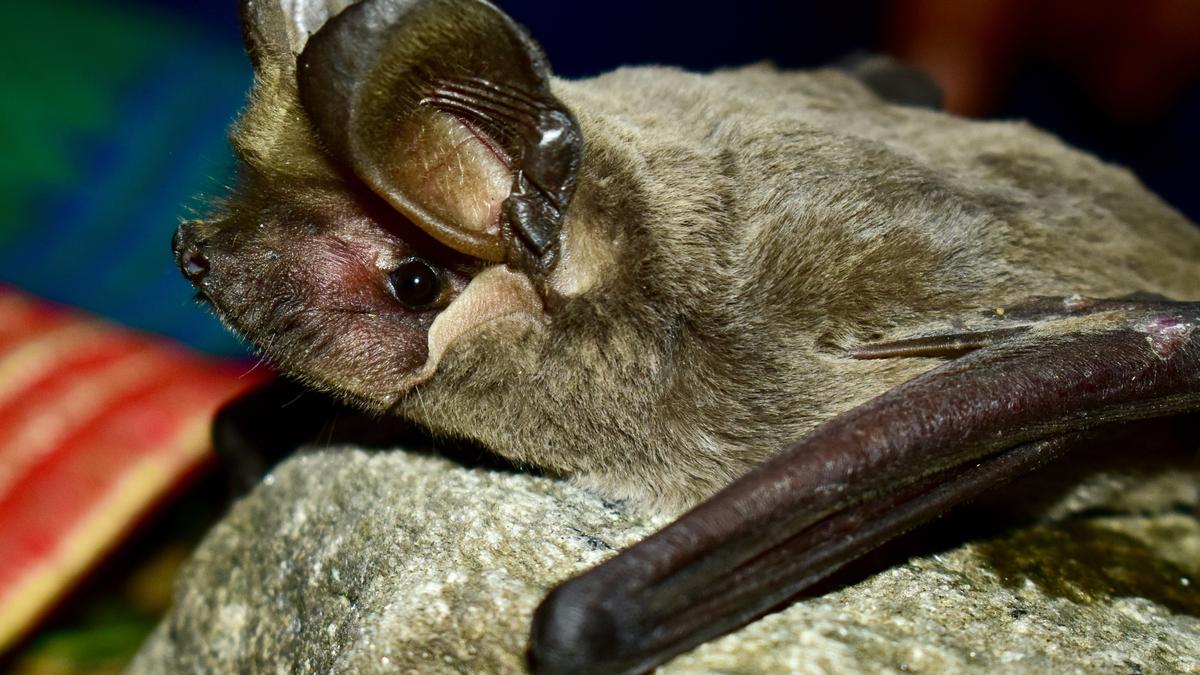
- 10 Jun 2025
In News:
A new bat species, the Himalayan Long-Tailed Myotis (Myotis himalaicus), has been described based on fieldwork in Uttarakhand and historical specimens from Pakistan. Published in Zootaxa journal by a team of Indian and international scientists.
Key Findings of the Study
- Study Area: Western Himalayas – Himachal Pradesh & Uttarakhand (2017–2021).
- Total Bat Species Documented: 29, including new records and confirmations.
- Raises India's bat species count to 135.
About Himalayan Long-Tailed Myotis (Myotis himalaicus)
Feature Description
Family/Genus Belongs to the Myotis frater complex
Habitat Deodar, pine, and cedar forests on southern Himalayan slopes
Distribution Found in Uttarakhand (India) and Khyber Pakhtunkhwa (Pakistan)
Size Medium-sized (~3.5 inches, <1 oz)
Morphology Delicate feet, long thumbs with short claws, short ears, fine teeth
Conservation Status Recently described; appears rare
Other Major Additions/Clarifications
- East Asian Free-Tailed Bat (Tadarida insignis):
- First confirmed record in India.
- Extends known range eastward by 2,500 km.
- Earlier misidentified as Tadarida teniotis.
- Babu’s Pipistrelle (Pipistrellus babu):
- Revalidated as a distinct species, not a synonym of Javan pipistrelle.
- Distribution: Pakistan, India, Nepal.
- First specimen-based confirmations in India for:
- Savi’s pipistrelle (Hypsugo savii)
- Japanese greater horseshoe bat (Rhinolophus nippon)
Ecological Importance of Bats
- Insect Control: Consume pests and mosquitoes.
- Pollination & Seed Dispersal: Important for forest regeneration.
- Fertilizer Contribution: Bat guano rich in Nitrogen & Phosphorous; boosts crop yield.
NASA's Mars Odyssey captures volcano piercing ice cloud belt
- 10 Jun 2025
In News:
- Recently, NASA’s 2001 Mars Odyssey orbiter captured a stunning image of Arsia Mons, a giant Martian volcano, rising through a morning belt of water-ice clouds.
- First such astronaut-like horizon view of Tharsis Montes volcanoes on Mars.
About Arsia Mons
- Part of Tharsis Montes, a trio of volcanoes near Mars' equator.
- Height: ~20 km (12 miles) – twice the height of Mauna Loa, Earth’s tallest volcano.
- Cloudiest of the Tharsis volcanoes.
- Cloud formation due to orographic uplift and cooling during Mars’ aphelion (farthest point from Sun).
- Featured in the aphelion cloud belt — a seasonal band of water-ice clouds.
Mission Evolution
- Mars Odyssey, launched in 2001, is the longest-operating Mars orbiter.
- In 2023, began a new imaging mode: rotating its THEMIS camera to capture horizon views of Mars’ upper atmosphere.
- These angled images help study seasonal changes in dust and water-ice cloud layers.
Scientific Significance
- Helps track Martian atmospheric evolution, especially cloud behavior and dust storms.
- Valuable for future human missions:
- Assists landing site safety planning.
- THEMIS also detects subsurface water ice, key for astronaut resource use.
Instruments and Collaborators
- THEMIS: Thermal Emission Imaging System, captures both visible and infrared light.
- Managed by NASA’s JPL, designed by Arizona State University, built by Lockheed Martin.
Stratospheric Aerosol Injection (SAI)
- 10 Jun 2025
In News:
A study recently published in the journal Earth’s Future offered an innovative approach to SAI technique that could reduce its costs but also bring it closer to fruition despite the opposition to it.
What is Stratospheric Aerosol Injection (SAI)?
- SAI is a proposed solar geoengineering technique to cool the Earth by injecting reflective aerosols (e.g. sulphur dioxide) into the stratosphere to reflect sunlight and reduce surface temperatures.
- Inspired by volcanic eruptions, like Mount Pinatubo (1991), which naturally cooled the Earth by emitting aerosols.
Recent Study Highlights (June 2025)
- Published in Earth’s Future journal.
- Led by Alistair Duffey, University College London.
- Used UK Earth System Model 1 (UKESM1) for climate simulations.
Key Findings
- Injecting 12 million tonnes of sulphur dioxide annually at 13 km altitude (spring/summer in each hemisphere) could cool the Earth by ~0.6°C.
- To cool by 1°C, ~21 million tonnes/year are needed at that altitude.
- Only 7.6 million tonnes/year are needed at higher altitudes (subtropics) for the same cooling.
Innovative Proposal
- Low-altitude SAI using modified existing aircraft (e.g. Boeing 777F) instead of specially designed high-altitude aircraft:
- Stratosphere is lower near poles (12–13 km), so current aircraft can reach it.
- Cost-effective and faster to deploy than high-altitude (~20 km) methods.
- Could begin within years, rather than a decade-long wait for new aircraft.
Risks and Concerns
- Tripling aerosol quantity (in low-altitude strategy) raises:
- Ozone depletion
- Acid rain
- Altered weather patterns
- Uneven global effects (benefits poles more, tropics less)
- Moral hazard: may reduce incentives to cut emissions.
- Governance challenge: One country’s action impacts all nations → risk of geopolitical conflict.
Why it matters
- Global GHG emissions are still rising.
- Climate mitigation through decarbonisation is slow and politically vulnerable.
- Technologies like SAI offer a stopgap, but not a substitute for emission cuts.
Neglected Tropical Diseases (NTDs)
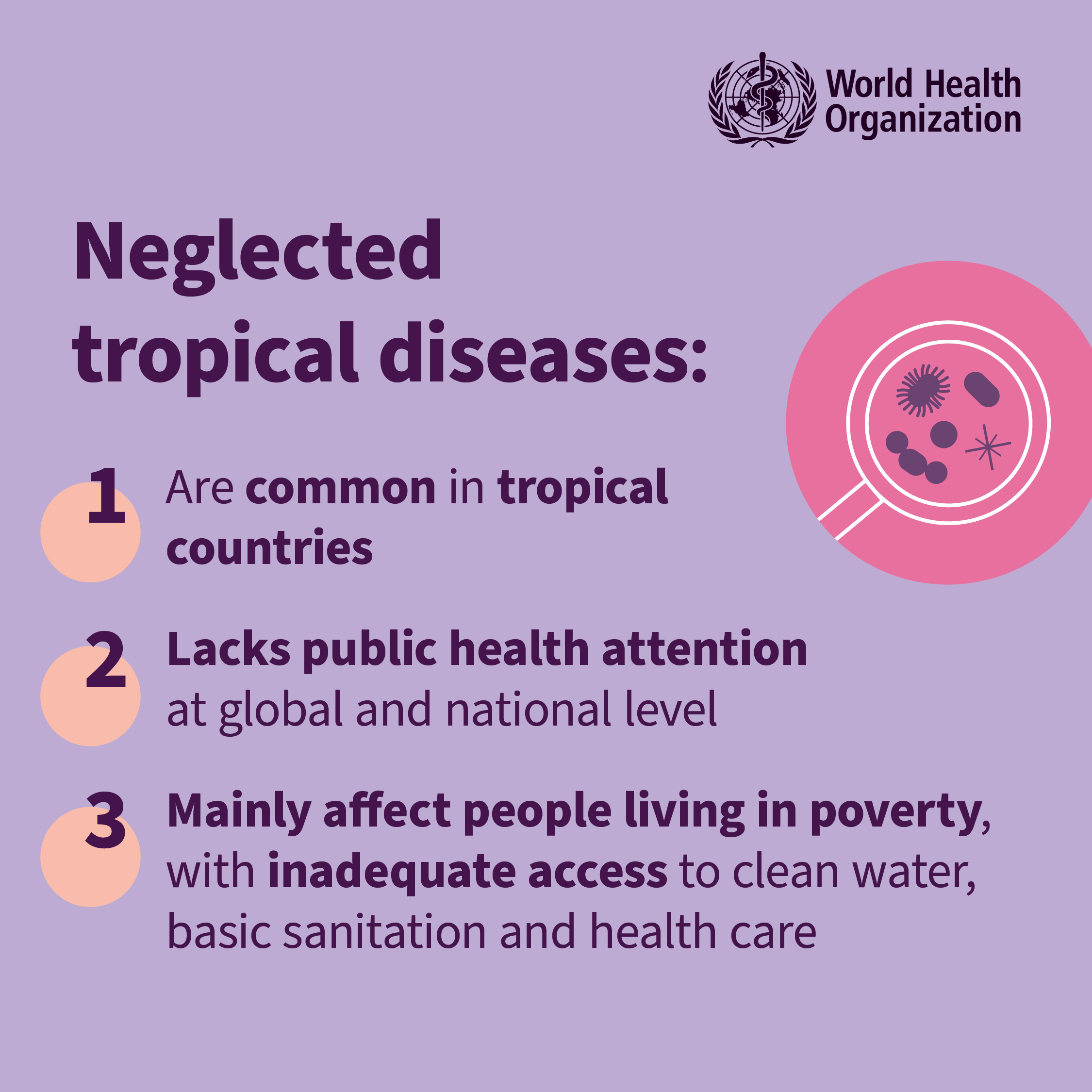
- 10 Jun 2025
In News:
Current Global Progress
- As of May 2025, 56 countries have eliminated at least one NTD, aligned with WHO’s 2030 target (100 countries).
- Between Jan 2023 – May 2025, 17 countries were officially acknowledged by WHO for NTD elimination.
- World NTD Day: Observed annually on 30th January.
What Are NTDs?
- NTDs are a group of infectious diseases affecting over 1 billion people, mainly in tropical and poor regions.
- Caused by parasites, bacteria, viruses, fungi, or toxins.
- Common NTDs include:
- Lymphatic Filariasis (Elephantiasis)
- Onchocerciasis (River Blindness)
- Schistosomiasis
- Soil-transmitted helminths
- Trachoma, Dengue, Kala-azar (Visceral Leishmaniasis)
Impact of Official Development Assistance (ODA) Cuts
- Major donors like the US and UK have withdrawn NTD funding:
- USAID previously provided US$ 1.4 billion, supporting 3.3 billion treatments across 26 countries, helping 14 of them eliminate at least one NTD.
- UK ended its ‘Ascend’ NTD programme in 2021.
WHO Warning:
- On 10 April 2025, WHO cautioned that over 70% of country offices reported health service disruptions due to ODA cuts.
- NTD services have been disrupted at levels similar to peak COVID-19.
Climate Change & Emerging Threats
- Climate change is worsening the NTD burden:
- Dengue declared a Grade 3 Emergency in 2024:
- 14 million cases, 10,000 deaths across 107 countries.
- Geographical expansion of vector-borne NTDs continues.
- Dengue declared a Grade 3 Emergency in 2024:
Public-Private Partnerships
- Pharma companies have donated US$ 12 billion+ worth of drugs (2011–2025), including: GSK, Pfizer, Sanofi, Merck, Bayer, Novartis, Johnson & Johnson, among others.
Recent Global Action
- At the 78th World Health Assembly (May 2025):
- Two NTD-related resolutions adopted:
- Eradication of Dracunculiasis (Guinea Worm)
- Control of Skin-related NTDs
- Two NTD-related resolutions adopted:
Way Forward
- Strengthen nationally owned, sustainable NTD programmes.
- Ensure alternative funding and service delivery mechanisms.
- Prevent reversal of hard-won gains and protect vulnerable communities from deeper health inequities.
Tamhini Wildlife Sanctuary
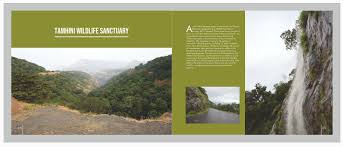
- 10 Jun 2025
In News:
The Maharashtra Forest Department partnered with Microsoft and Pune-based CYDA (Centre for Youth Development and Activities) to address the eco-restoration project in the Tamhini Wildlife Sanctuary.
Location & Geography:
- Situated in the Western Ghats, about 70 km from Pune, Maharashtra.
- Notified as a Wildlife Sanctuary in January 2013.
- Spread over 49.62 sq. km, comprising:
- 12 forest compartments from Paund and Sinhgad ranges (Pune forest division).
- 8 compartments from Mangaon range (Roha division, Thane).
Vegetation Types:
- Dominated by evergreen, semi-evergreen, and moist deciduous forests.
- Rich floral diversity including teak, bamboo, Ain, Shisham, mango, and jamun.
Biodiversity Highlights:
- Mammals (28 species):
- Includes the Indian Giant Squirrel (Shekaru) – state animal of Maharashtra.
- Also hosts Indian pangolin, barking deer, Indian civet, and wild boar.
- Home to the Kondana Soft-furred Rat (Millardia kondana) – an endangered species.
- Birds (150 species):
- Notable species: Malabar whistling thrush, golden oriole, crested serpent eagle, Indian pitta, grey junglefowl.
- Includes 12 species endemic to India.
- Insects & Others:
- 72 species of butterflies, 18 reptile species, and 33 invertebrate species.
Ecological Importance:
- Part of the Western Ghats, a globally recognized biodiversity hotspot.
- Habitat for rare, endemic, and threatened species.
- Supports vital ecosystem services, aiding in climate regulation, water conservation, and pollination.
Recent Conservation Initiative:
- A collaborative eco-restoration project was launched by the Maharashtra Forest Department, Microsoft, and CYDA (Centre for Youth Development and Activities), Pune.
- Aim: Address socio-ecological challenges, promote community engagement, and leverage technology in conservation.
Eco-tourism Potential:
- Features popular trekking and nature spots like Andharban forest, Plus Valley, and Devkund.
- Attracts high tourist footfall, especially during monsoon, including bird watchers and nature enthusiasts.
Raja Bhabhut Singh Honoured
- 09 Jun 2025
In News:
In June 2025, the Madhya Pradesh Government held a special Cabinet meeting at Pachmarhi, renaming the Pachmarhi Wildlife Sanctuary after Raja Bhabhut Singh, a lesser-known but formidable tribal freedom fighter of the 1857 revolt.
About Raja Bhabhut Singh
- Lineage: Belonged to the Jagirdar family of Harrakot Raikheri, descended from Thakur Ajit Singh. His grandfather, Thakur Mohan Singh, had allied with Peshwa Appa Saheb Bhonsle of Nagpur during the 1819–20 resistance against the British.
- Role in 1857 Revolt:
- A key Gond tribal leader with control over Jabalpur and the Satpura hills.
- Employed guerrilla warfare tactics in the Satpura forests, using deep geographical knowledge to harass British forces.
- Maintained close ties with Tatya Tope, a prominent national leader.
- Martyrdom:
- British deployed the Madras Infantry to capture him.
- He was executed in 1860, and is remembered in Korku tribal folklore.
- Known as the "Shivaji of Narmadachal" for his resistance strategies.
Pachmarhi Wildlife Sanctuary (Now Raja Bhabhut Singh Sanctuary)
- Located in the Satpura mountain range, central Madhya Pradesh, within the Deccan Peninsula biogeographic zone.
- Highest point: Dhoopgarh (1,352 m).
- Forms part of the Satpura Tiger Reserve, along with:
- Satpura National Park
- Bori Wildlife Sanctuary
- Key Biodiversity Zone in Central India.
Korku Tribe Overview
- Region: Mainly in Madhya Pradesh, Chhattisgarh, and Melghat (Maharashtra).
- Occupation: Traditionally agriculturalists; introduced potato and coffee cultivation.
- Society: Patrilineal communities led by traditional headmen.
- Culture:
- Practice ancestral worship through memorial stones called Munda.
- Rich in oral traditions, which preserve the memory of tribal icons like Raja Bhabhut Singh.
Starlink receives DoT licence to launch Satellite Internet in India

- 09 Jun 2025
In News:
- The Department of Telecommunications (DoT) has granted a licence to Elon Musk’s Starlink to provide satellite-based internet services in India.
- Starlink becomes the third company, after Eutelsat OneWeb and Jio Satellite Communications, to receive such approval. A fourth contender, Amazon’s Kuiper, is still awaiting clearance.
What is Starlink?
- Developer: Starlink is a satellite internet system by SpaceX, founded by Elon Musk in 2002.
- Objective: Deliver high-speed, low-latency broadband globally, especially targeting rural and remote areas with limited connectivity.
- Technology:
- Operates a constellation of Low Earth Orbit (LEO) satellites (~550 km altitude).
- Satellites communicate via laser links for inter-satellite data relay, forming a global mesh.
- Ground stations transmit data to satellites, which then beam it to user terminals.
Key Features of Starlink
- Speed: Up to 150 Mbps, with future plans to increase it.
- Latency: As low as 20–25 milliseconds — ideal for video calls and streaming.
- Tech Stack:
- Flat-panel antennas for easy user access.
- Argon-powered ion thrusters for satellite positioning.
- Space lasers for fast inter-satellite communication.
- Deployment: Satellites launched via Falcon 9 rockets with regular updates.
- Scale: Plans to deploy up to 42,000 satellites globally.
Significance for India
- Bridging the Digital Divide: Ensures internet access in rural, remote, and disaster-prone regions.
- Reduced Infrastructure Dependency: Less reliance on fibre optics and mobile towers in hard-to-reach areas.
- Boost to Digital Economy: Enhances competition in India’s broadband sector, especially in Tier 2 and Tier 3 cities.
- Security Compliance: Starlink must adhere to India’s security norms, including lawful interception requirements, before commercial rollout.
- Next Steps: Will receive trial spectrum within 15–20 days post-application.
Ranthambore Tiger Reserve
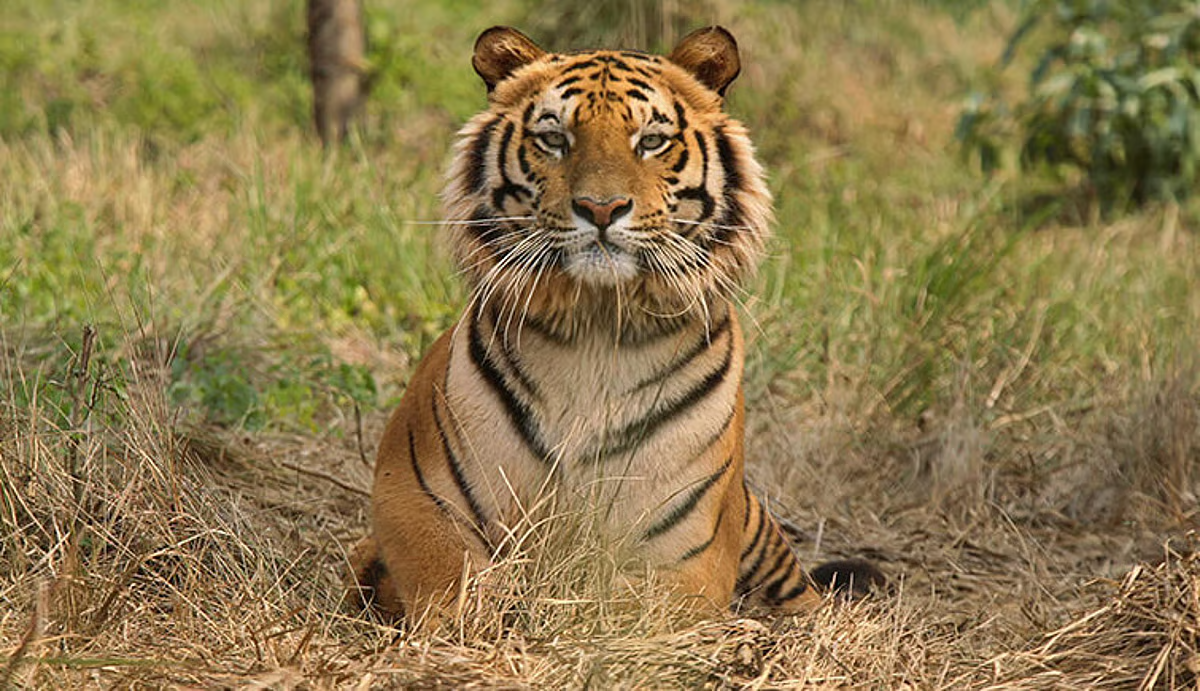
- 09 Jun 2025
In News:
The Supreme Court of India has recently ordered the Rajasthan government to impose an immediate ban on all mining activities within the core area of the Ranthambore Tiger Reserve, citing concerns over wildlife protection and habitat preservation.
About Ranthambore Tiger Reserve
- Location: Sawai Madhopur district, southeastern Rajasthan.
- Named After: Ranthambore Fort, a UNESCO World Heritage Site, located within the reserve.
- Geographical Boundaries:
- North: Bounded by the Banas River
- South: Bounded by the Chambal River
- Terrain: High rocky plateaus, valleys, rivers, lakes, and historic ruins including forts and mosques.
- Total Area: ~1,411 sq.km, making it one of the largest tiger reserves in northern India.
- Surrounding Ranges: Located at the confluence of the Aravalli and Vindhya hill ranges.
Ecology and Biodiversity
Vegetation: Dominated by dry deciduous forests and open grassy meadows.
- Flora:
- Predominantly Dhok tree (Anogeissus pendula).
- Other species: Acacia, Capparis, Zizyphus, Prosopis, etc.
Water Bodies:
- Important lakes include:
- Padam Talab
- Raj Bagh Talab
- Malik Talab
Fauna:
- Apex predator: Royal Bengal Tiger
- Other mammals:
- Leopard, Caracal, Jungle Cat
- Sambar, Chital, Chinkara, Wild Boar
Historical Significance: Previously served as the royal hunting grounds of the Maharajas of Jaipur.
RBI Revises LTV Ratio for Gold-Backed Loans
- 09 Jun 2025
In News:
- The Reserve Bank of India (RBI) has announced revised guidelines to enhance formal sector lending and ease credit access for small-ticket gold loan borrowers, especially in rural and semi-urban areas.
- The new norms focus on raising the Loan-to-Value (LTV) ratio for gold-backed loans up to ?5 lakh and simplifying appraisal norms for such loans.
What is the Loan-to-Value (LTV) Ratio?
- Definition: The LTV ratio is the percentage of a collateral’s value that a lender offers as a loan.
- Formula:
LTV Ratio= (Loan Amount / Appraised Value of Asset) × 100
- A higher LTV indicates greater credit against the same asset but also entails higher risk for the lender.
- Assets like gold, with a stable value and liquid secondary market, are more "desirable" as collateral, often attracting higher LTVs.
Revised RBI Guidelines (June 2025): LTV Ratio for Gold Loans
Loan Amount Revised LTV Ratio Previous LTV (Draft April 2025)
Up to ?2.5 lakh 85% 75%
?2.5 lakh – ?5 lakh 80% 75%
Above ?5 lakh 75% 75%
- The interest component is included in the LTV calculation.
- The move reverses the uniform 75% LTV cap proposed in the April 2025 draft norms.
Additional Key Features
- No credit appraisal required for loans up to ?2.5 lakh.
- End-use monitoring is necessary only if the borrower wishes to qualify the loan under priority sector lending.
- The average ticket size of gold loans (~?1.2 lakh) is expected to increase due to relaxed norms.
- These loans are crucial for middle-class, lower middle-class, self-employed, and small businesses, often lacking formal income proof.
Rationale and Impact
- The revised norms aim to:
- Enhance credit accessibility.
- Prevent migration of borrowers to informal lenders.
- Boost financial inclusion and formalize rural credit ecosystems.
- Industry experts and NBFCs like Muthoot FinCorp and Shriram Finance have welcomed the move, noting it would benefit women, rural borrowers, and small traders.
- Shares of leading gold loan NBFCs like Muthoot Finance, Manappuram Finance, and IIFL Finance witnessed a sharp increase following the announcement.
Index Cards

- 09 Jun 2025
In News:
The Election Commission of India (ECI) has recently upgraded the mechanism for generating Index Cards, making it more technology-driven and automated. Index Cards are a non-statutory, post-election statistical reporting format developed suo moto by the ECI to enhance transparency and accessibility of electoral data at the constituency level.
Purpose and Utility
Index Cards are designed to compile and disseminate election-related data for use by:
- Researchers
- Academia
- Journalists
- Policymakers
- The general public
Scope of Information
The Index Cards provide a wide range of data, including:
- Candidate-wise and party-wise vote share
- Electors and votes polled/counted
- Gender-based voting patterns
- Regional variations in voter turnout
- Performance of:
- National and State parties
- Registered Unrecognised Political Parties (RUPPs)
- Participation of women voters
- Winning candidates' analyses
- State/PC/AC-wise elector details and number of polling stations
Technological Upgrade
Earlier, data was manually filled into physical Index Cards at the constituency level using various statutory formats. These were later digitized for statistical reporting, resulting in delays and inefficiencies.
The 2025 upgrade has:
- Replaced the manual system with an automated, data-integrated mechanism
- Ensured faster and more reliable reporting
- Improved the timeliness of data dissemination
Nature of Data
- Index Cards are based on secondary data used exclusively for academic and research purposes.
- Primary and final electoral data is maintained in statutory forms by the respective Returning Officers.
INS Arnala
- 08 Jun 2025
In News:
The Indian Navy is set to commission 'Arnala', the first warship under the Anti-Submarine Warfare Shallow Water Craft (ASW-SWC) series at the Naval Dockyard in Visakhapatnam. The commissioning will be presided over by Chief of Defence Staff, General Anil Chauhan.
About INS Arnala
- Type: First in the series of 16 Anti-Submarine Warfare Shallow Water Crafts (ASW-SWC)
- Builder:
- Primary: Garden Reach Shipbuilders & Engineers (GRSE), Kolkata
- Partner: L&T Shipbuilders
- Delivery Date: May 8, 2025
- Indigenous Content: Over 80%
- Partners Involved:
- BEL, L&T, Mahindra Defence, MEIL
- 55+ MSMEs involved in the supply chain
Capabilities & Features
- Length: 77 meters
- Displacement: 1,490+ tonnes
- Propulsion: Diesel engine-waterjet system (a first for a warship of this size in India)
- Roles:
- Anti-submarine operations in coastal/shallow waters
- Subsurface surveillance
- Search and Rescue (SAR)
- Low-intensity maritime operations
Significance
- Aatmanirbhar Bharat Milestone: Highlights indigenous shipbuilding and defence manufacturing capabilities
- Boost to Coastal Defence: Enhances the Navy’s reach in shallow and strategic coastal zones
- Employment & Industrial Growth: Significant MSME and domestic defence industry involvement
Heritage & Symbolism
- Name Origin: Inspired by Arnala Fort, near Vasai, Maharashtra
- Built by the Marathas in 1737 under Chimaji Appa
- Historically guarded the Vaitarna River mouth and northern Konkan coast
- Design Symbolism:
- Armoured hull reflects the resilient walls of Arnala Fort
- Advanced sensors and weapons echo the fort’s cannons
- Crest:
- Stylised auger shell – precision, strength, vigilance
- Motto: Arnave Shauryam — “Valour in the Ocean”
Rediscovery of Losgna Genus in India

- 08 Jun 2025
In News:
At a time when habitat loss and climate change threaten countless species, the discovery of a new species of parasitic wasp - named ‘Losgna Occidentalis’ from Chandigarh has drawn attention to the unexplored richness of India’s biodiversity.
Location of Discovery
- Place: Chandigarh, Union Territory of India
- Habitat: Urban dry scrub forest
- Time: Winter of 2023–24
- Significance: First formal description of any insect species from Chandigarh
Species Description
- Name: Losgna occidentalis
- Genus: Losgna (Ichneumonidae family – Parasitic wasps)
- Group Role: Parasitic wasps known for laying eggs inside/on arthropod hosts
- Ecological Role: Pollinators and biological control agents (important in ecosystems)
Historical Context
- Losgna genus was last recorded in India in 1965, in Heinrich’s monograph
- No Indian records or specimens existed post-1965 in any institution
- Only known specimens (of other Losgna species) are preserved in:
- Natural History Museum, London
- The Hope Collection, Oxford University
- Zoologische Staatssammlung München, Germany
Naming Rationale
- "Occidentalis" (Latin for "Western")
- Signifies the westernmost known range of the genus
- Earlier Losgna records were only from:
- Northeast India
- Southeast Asia (tropical forests)
- Published in Zootaxa (peer-reviewed journal for animal taxonomy)
Importance & Implications
- Rediscovery highlights India’s hidden and threatened biodiversity
- Emphasizes the critical role of taxonomy in conservation
- Shows potential for citizen-led discoveries and backyard biodiversity
- Demonstrates the need for:
- Responsible specimen collection
- International scientific collaboration
- Support for underfunded taxonomy sectors
Discovery of 800-Year-Old Pandya-Era Shiva Temple

- 08 Jun 2025
In News:
An 800-year-old Shiva temple of the later Pandya period has been unearthed at Udampatti, a village in Melur taluk, Madurai district, Tamil Nadu.
Key Highlights:
- Discovery: Foundation of a later Pandya period Shiva temple (dated to 1217–1218 CE) unearthed accidentally by children.
Architectural Insights:
- Only the stone base of the temple (north and south sides) survives.
- Identified as a Shaivite temple using foundation engravings and reference to Silpa Sastram.
Inscriptions & Historical Significance:
- Inscriptions deciphered by C. Santhalingam (Pandya Nadu Centre for Historical Research).
- Temple identified as Thennavanisvaram, located in ancient Attur (present-day Udampatti).
- “Thennavan” was a Pandya royal title, suggesting direct patronage.
Key Inscriptions (1217–18 CE):
- A sale deed records the transfer of a waterbody named Nagankudi along with wet/dry land.
- Seller: Alagaperumal, chieftain of Kalavalinadu
- Buyer: Nambi Perambala Kuthan alias Kangeyan
- Sale amount: 64 kasu (coins)
- Tax revenue from the land assigned to the temple for daily expenses, indicating its financial independence.
Archaeological Relevance:
- Confirms ancient village name (Attur), showcasing socio-economic practices during the Later Pandya period.
- Highlights temple economy, land-water rights, and administrative structures.
Pandya Dynasty
- One of the Three Crowned Tamil Dynasties (alongside Cholas and Cheras).
- Capital: Initially Korkai, later Madurai.
- Early Pandyas active since 4th century BCE; Later Pandyas (1216–1345 CE) saw a golden age under Maravarman Sundara Pandyan.
- Controlled parts of Sri Lanka, Telugu regions, and had trade links with Rome & Southeast Asia.
- Symbol: Fish
Cultural Contributions:
- Patronage of Sangam literature, Shaivism, Vaishnavism, Jainism.
- Temples: Meenakshi Temple (Madurai), Nellaiappar Temple (Tirunelveli).
- Promoted Tamil arts, Bharatanatyam, and education.
Decline:
- Succumbed to Chola, Hoysala conflicts and Delhi Sultanate invasions.
- Madurai Sultanate (1335) and later Madurai Nayak dynasty (1529) succeeded their rule.
National e-Vidhan Application (NeVA)

- 08 Jun 2025
In News:
Union Minister of State Dr. L. Murugan will inaugurate the National e-Vidhan Application (NeVA) for the Puducherry Legislative Assembly.
What is NeVA?
- Full Form: National e-Vidhan Application
- Launched by: Ministry of Parliamentary Affairs (MoPA)
- Aim: Make legislative functioning paperless across all 37 State/UT legislatures under the idea of “One Nation – One Application.”
Key Features:
- Unified digital platform for legislative work
- Enables real-time document access, online notices, and session management
- Integrates AI/ML-based real-time translation (via partnership with BHASHINI, MeitY)
- Promotes transparency, efficiency, and environmental sustainability
Funding & Implementation:
- Approved by: Public Investment Board (PIB) on 15 January 2020
- Budget: ?673.94 crore
- Model: Centrally Sponsored Scheme (CSS)
Significance:
- Digital transformation of legislative processes
- Creation of a central data repository
- Enhanced inter-legislature connectivity
- Boosts Digital India and Good Governance goals
4th India–Central Asia Dialogue (2024)
- 08 Jun 2025
In News:
India hosted the 4th edition of the India–Central Asia Dialogue in New Delhi, chaired by External Affairs Minister Dr. S. Jaishankar. The event emphasized regional security, connectivity, critical minerals, counter-terrorism, and economic integration.
What is the India–Central Asia Dialogue?
- Type: Multilateral forum for structured engagement between India and Central Asian republics.
- Initiated in: 2019, Samarkand (Uzbekistan).
- Participants: India, Kazakhstan, Kyrgyz Republic, Tajikistan, Turkmenistan, Uzbekistan.
Key Objectives:
- Strengthen cooperation in trade, connectivity, security, energy, health, and technology.
- Promote regional stability, counter-terrorism collaboration, and sustainable development.
- Enhance people-to-people ties and institutional coordination.
Major Outcomes of the 4th Dialogue:
- Security Cooperation:
- Condemned terror attacks (e.g., Pahalgam).
- Called for early adoption of the UN Comprehensive Convention on International Terrorism.
- Critical Minerals & Rare Earths:
- Joint intent for collaboration in exploration and investment.
- Decision to hold the 2nd India–Central Asia Rare Earth Forum soon.
- Connectivity & Trade:
- Focus on using the International North-South Transport Corridor (INSTC) and Chabahar Port.
- Supported Uzbekistan and Turkmenistan's inclusion in INSTC.
- Digital & Financial Integration: Agreement to boost digital payments, interbank ties, and trade in local currencies.
- Health and Traditional Medicine: Shared commitment to Universal Health Coverage, medical tourism, and integration of AYUSH systems.
- Clean Energy & Technology: Cooperation on platforms like India Stack, International Solar Alliance, and biofuels.
- Multilateral Support: Reiterated support for India’s permanent seat in UNSC and active role in SCO and UN.
India’s Automotive Industry and Global Value Chains
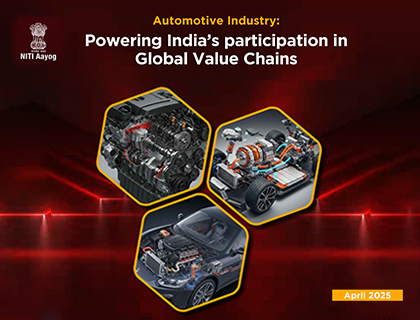
- 14 Apr 2025
In News:
NITI Aayog has recently released a comprehensive report titled “Automotive Industry: Powering India’s Participation in Global Value Chains”. It offers a roadmap to boost India’s role in the global automotive sector by enhancing competitiveness, production capacity, and export potential.
India’s Current Position
India is the world’s fourth-largest automobile producer, with nearly 6 million vehicles manufactured annually. However, its share in the global automotive component trade remains modest at 3%, primarily due to limited penetration in high-precision segments like engine components and drive transmission systems. The country exports auto components worth $20 billion, with major strengths in small cars and utility vehicles.
Global Landscape and Emerging Trends
Globally, 94 million vehicles were produced in 2023, with the automotive components market valued at $2 trillion, of which $700 billion was exported. The industry is witnessing rapid transformation through:
- Electric Vehicles (EVs): Rising demand, regulatory shifts, and battery innovations are reshaping manufacturing.
- Battery Ecosystems: Hubs in Europe and the US are altering global supply chains, focusing on lithium and cobalt.
- Industry 4.0: AI, IoT, robotics, and machine learning are revolutionizing automotive manufacturing through smart factories and digital supply chains.
Challenges to India’s GVC Participation
Despite a strong production base, India faces several hurdles in climbing the Global Value Chain (GVC):
- Low R&D spending and limited innovation
- High operational costs and infrastructural gaps
- Weak IP ecosystem and low brand visibility
- Inadequate skilling and moderate digital adoption
Strategic Interventions Proposed
NITI Aayog recommends a combination of fiscal and non-fiscal measures to address these gaps and strengthen India’s automotive ecosystem.
Fiscal Measures:
- Opex support to scale up production and infrastructure
- Skilling initiatives to build a trained workforce
- R&D incentives and IP transfer support for MSMEs
- Cluster development for shared R&D and testing facilities
Non-Fiscal Measures:
- Promoting Industry 4.0 adoption and quality manufacturing
- Ease of Doing Business reforms in labour, logistics, and regulations
- Global tie-ups and Free Trade Agreements (FTAs) to boost exports
Vision for 2030
By 2030, the report envisions:
- Auto component production to grow from ~$60 billion to $145 billion
- Exports to increase from $20 billion to $60 billion
- GVC share to rise from 3% to 8%
- Trade surplus of around $25 billion
- Employment generation of 2–2.5 million additional jobs
Index of Industrial Production (IIP)

- 14 Apr 2025
In News:
The Index of Industrial Production (IIP), a key barometer of industrial activity in India, registered a growth of just 2.9% in February 2025, the slowest pace in six months. This was below market expectations of around 4% and reflects broad-based slowdown across sectors.
About the IIP
- Published by: Central Statistics Office (CSO), Ministry of Statistics and Programme Implementation (MoSPI)
- Base Year: 2011–12
- Purpose: Measures the short-term changes in volume of production in industrial sectors.
Sectoral Composition and Weights
Sector Weight in IIP No. of Items
Manufacturing 77.63% 809
Mining 14.37% 29
Electricity 7.99% 1
Sector-wise Performance (YoY in February 2025)
Sector Feb 2025 Growth Feb 2024 Growth
Mining 1.6% 8.1%
Manufacturing 2.9% 4.9%
Electricity 3.6% 7.6%
Use-Based Classification Performance
Category Feb 2025 Growth Feb 2024 Growth
Capital Goods 8.2% 1.7%
Intermediate Goods 1.5% —
Consumer Non-Durables -2.1% -3.2%
Observation: Capital goods were the only category to show robust growth. All other segments registered deceleration.
Eight Core Industries (Weight in IIP: 40.27%)
In decreasing order of weight:
- Refinery Products
- Electricity
- Steel
- Coal
- Crude Oil
- Natural Gas
- Cement
- Fertilisers
Key Concerns Highlighted
- Slowing growth across mining, manufacturing, and electricity sectors
- A high base effect from the previous year
- A decline in month-on-month output after five months of sustained growth
- Consumer non-durables in continued contraction, indicating weak rural/household demand
Amrit Bharat Scheme
- 14 Apr 2025
In News:
The Amrit Bharat Station Scheme (ABSS), launched to transform railway stations across India into world-class travel hubs, has achieved a key milestone. Railway Minister Ashwini Vaishnaw announced the completion of redevelopment work at 104 stations out of the planned 1,300 stations under the scheme.
About the Amrit Bharat Station Scheme
- Launched: 2023
- Objective: Comprehensive redevelopment of railway stations to:
- Upgrade passenger amenities
- Enhance multi-modal connectivity
- Modernize infrastructure with sustainable and accessible design
Key Updates (As of April 2025)
- Total stations under ABSS: 1,300
- Stations with completed redevelopment: 104
- Stations in Maharashtra: 132 (significant progress reported)
Major Highlights
Feature Details
Notable Station Project Chhatrapati Shivaji Maharaj Terminus (CSMT), Mumbai
CSMT Redevelopment Cost ?1,800 crore
Modern Facilities Planned Waiting lounges, food courts, clean restrooms, lifts, escalators,
digital signage
International Comparison CSMT post-redevelopment projected to surpass
London’s Kings Cross station
Additional Infrastructure Developments in Maharashtra
- Gondia–Ballarshah Railway Line Doubling:
- Length: 240 km
- Region: Vidarbha
- Approved Investment: ?4,819 crore
- Strategic Importance: Enhances connectivity and freight movement
Centre–State Collaboration
- A Memorandum of Understanding (MoU) was signed between the Government of India and Government of Maharashtra for railway project implementation and coordination.
Beijing+30 India Report
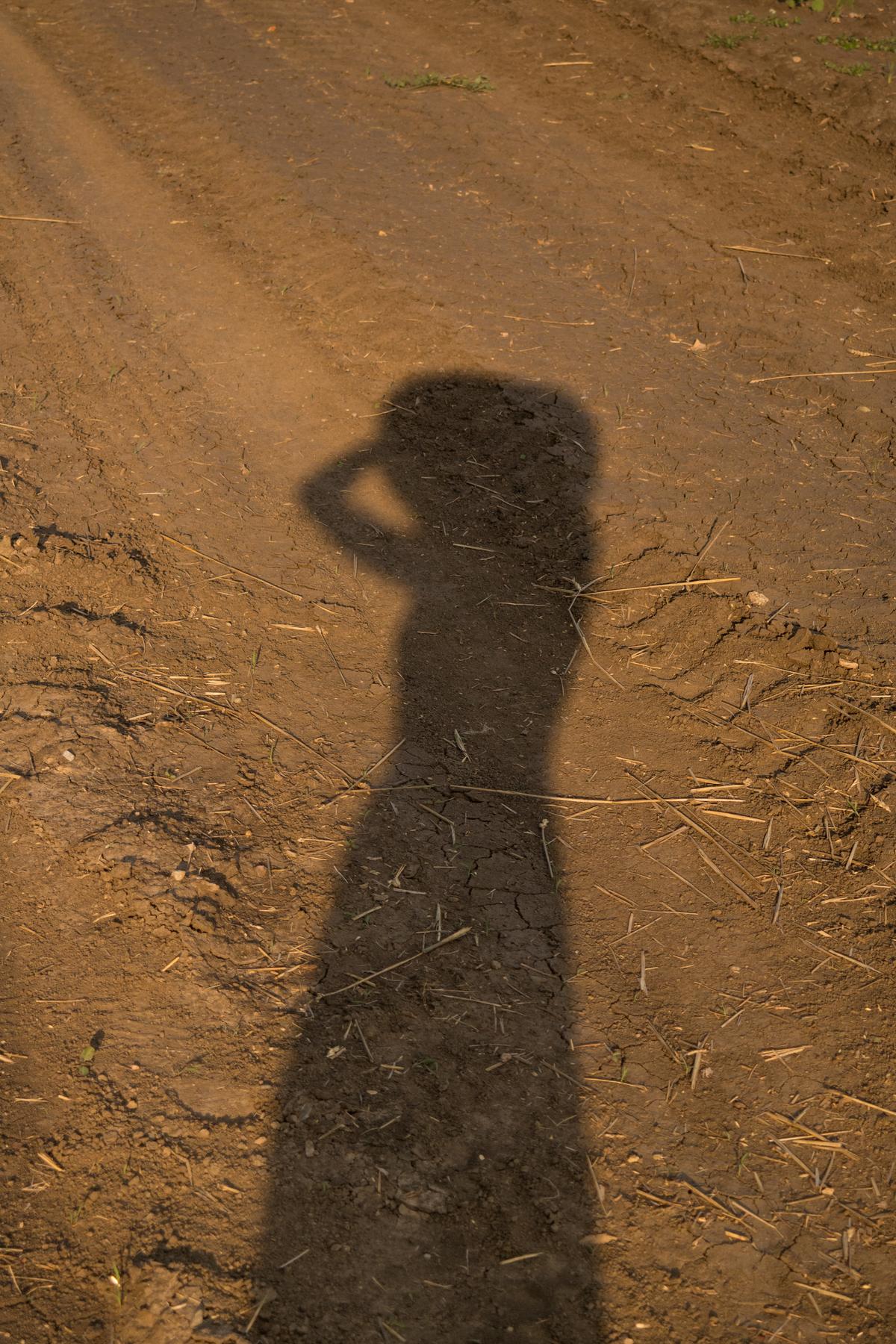
- 14 Apr 2025
In News:
India’s official submission on the Beijing+30 Report marks three decades since the Beijing Declaration and Platform for Action (1995), a landmark framework advancing gender equality across 12 key areas such as education, health, economy, and political participation.
While the report acknowledges past progress—including enactment of laws like the Domestic Violence Act (2005) and the POSH Act (2013)—it lacks an integrated climate-gender perspective, an urgent gap given rising climate vulnerabilities affecting women disproportionately.
Climate Change and Gender Inequality: A Dual Challenge
- Rural women, particularly in agrarian and forest-dependent regions, face acute consequences of climate change—loss of livelihood, food insecurity, and health risks.
- India’s rural women often bear the brunt of extreme weather events, droughts, and resource scarcity.
- According to reports:
- 33% loss of income occurs due to climate-induced productivity disruption, especially from non-farm sources.
- Women perform over 8 hours of daily work, of which 71% is unpaid.
- By 2050, unpaid care work is projected to rise to 8.3 hours/day without mitigation.
Key Data and Impacts
Indicator Insight
Pregnant women (India) 50%+ are anaemic; worsened by food insecurity
Temperature–Violence Link +1°C rise → 8% rise in physical violence, 7.3% rise in sexual violence
Climate policies (FAO) Only 6% mention women; 1% mention poor people
Agriculture Potential Closing gender gap in agri-inputs could raise yields by 20–30%
Women as Agents of Climate Resilience
- Women contribute to 50% of global food production and lead community efforts in seed preservation, sustainable farming, and disaster response.
- Indigenous and rural women prioritize livelihood security (Mahua), safety (Mao), and managing migration—termed the three M's.
- Informal women’s collectives are key in disaster resilience, ecosystem protection, and productivity gains.
Recommendations for Climate-Gender Integration
- Policy Interventions:
- Introduce gender-responsive climate budgeting to prevent greenwashing and ensure equitable allocation.
- Incorporate gender in NAPCC, SAPCC, and ensure percolation to local governance and disaster planning.
- Address emerging risks—trafficking, migration, health, and geriatric safety in disaster zones.
- Data and Monitoring:
- Establish indicators and research on gendered climate impacts.
- Conduct inclusive climate consultations to enable community-driven planning.
- Private Sector & Green Finance:
- Encourage women-led green enterprises, climate-resilient technologies, and inclusive innovations.
- Allocate climate adaptation funds to skill-building, non-farm livelihoods, and local resilience-building.
- Partnership Model:
- Promote collaboration between government, civil society, research institutions, private sector, and international organisations.
- Foster knowledge exchange, capacity building, and public recognition of women climate leaders.
Neutrino Mass and the KATRIN Experiment
- 14 Apr 2025
In News:
The KATRIN experiment nearly halved the maximum possible mass for the subatomic particles.
What are Neutrinos?
- Neutrinos are electrically neutral fundamental particles under the Standard Model of particle physics.
- They are produced in natural processes such as radioactive decay and nuclear reactions in stars and the Sun.
- Notably, they interact very weakly with matter and possess extremely small mass — less than a millionth the mass of an electron.
- Their exact mass is still not directly known, making them a key area of research in modern physics.
The KATRIN Experiment
- Full Form: Karlsruhe Tritium Neutrino Experiment
- Location: Karlsruhe Institute of Technology, Germany
- Objective: To determine the mass of the electron antineutrino, a type of neutrino released during beta decay of tritium.
- Method: By observing the energy spectrum of electrons emitted from tritium decay, scientists infer the mass of the associated neutrino — since more massive neutrinos carry away more energy.
Latest Findings (2025)
- KATRIN has now lowered the upper limit of the neutrino mass to less than 0.45 electron volts (eV).
- This marks a ~50% improvement from its previous estimate, demonstrating enhanced precision in measurements.
- The conclusion was drawn from analysis of 36 million electrons emitted during tritium decay.
DRDO’s Long-Range Glide Bomb (LRGB) ‘Gaurav’
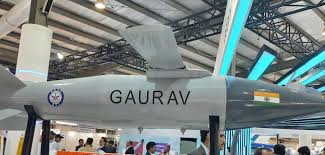
- 13 Apr 2025
In News:
The Defence Research and Development Organisation (DRDO) successfully conducted release trials of the indigenously developed Long-Range Glide Bomb (LRGB) ‘Gaurav’ from a Su-30 MKI aircraft.
About LRGB ‘Gaurav’
- Type: Air-launched, precision-guided munition.
- Purpose: Designed for accurate strikes on land targets from stand-off distances, i.e., beyond enemy air defence range.
- Indigenously developed by DRDO under the Ministry of Defence.
Key Features
- Range:
- Demonstrated precision strike at nearly 100 km.
- Operational range: 30–150 km.
- Variants by Weight:
- Gaurav (winged): 1,000 kg
- Gautham (non-winged): 550 kg
- Guidance Systems:
- Inertial Navigation System (INS)
- Satellite-based navigation (e.g., GPS/IRNSS)
- Digital control for enhanced accuracy
Significance
- Boosts India’s precision strike capability.
- Promotes self-reliance in defence technology under the Atmanirbhar Bharat initiative.
Related Concepts
Glide Bomb:
- A precision-guided munition that travels significant distances without powered propulsion.
- Uses aerodynamic lift to glide toward the target.
- Navigation via INS, GPS, or laser guidance.
Su-30 MKI Aircraft:
- A twin-engine, multirole fighter aircraft.
- Developed jointly by Sukhoi Design Bureau (Russia) and Hindustan Aeronautics Limited (HAL).
- Backbone of the Indian Air Force (IAF) combat fleet.
Legionnaires’ Disease
- 13 Apr 2025
In News:
Health authorities in New South Wales (NSW), Australia, have issued a public alert after a spike in Legionnaires’ disease cases in Sydney. The outbreak is suspected to be linked to contaminated air-conditioning systems in the city.
About Legionnaires’ Disease
Aspect Details
Cause Legionella bacteria, found in freshwater and man-made water systems
Type A severe form of pneumonia
Related Disease Pontiac fever – a milder, flu-like respiratory illness caused by the same bacteria
Key Features
- Symptoms:
- High fever, cough, shortness of breath
- Muscle pain, headaches, confusion
- Diarrhoea or nausea in some cases
- Transmission:
- Not person-to-person
- Spread through inhalation of contaminated aerosols (e.g., from cooling towers, air conditioners, hot tubs)
- Risk Factors:
- Elderly individuals
- Smokers
- People with weakened immune systems or chronic lung conditions
Treatment and Prevention
- Treatment: Requires antibiotic therapy
- Vaccine: No vaccine currently available
- Prevention:
- Regular maintenance and disinfection of water systems
- Monitoring air-conditioning and cooling systems
Indian Giant Flying Squirrel
- 13 Apr 2025
In News:
A rare sighting of the Indian Giant Flying Squirrel (Petauristaphilippensis) has been reported in Ranikhet, a hill station in Uttarakhand, highlighting the ecological richness of the region.
About Indian Giant Flying Squirrel
Feature Description
Scientific Name Petauristaphilippensis
Size Body length: 30–45 cm; Tail length: up to 60 cm
Appearance Rufous coat, grey underparts, large eyes, and a gliding membrane from wrist
to ankle
Locomotion Glides up to 60 meters between trees using patagium (gliding membrane)
Habitat and Distribution
- Found in tropical and subtropical forests across central and southern India
- Inhabits evergreen, semi-evergreen, and deciduous forests, especially near forest edges
- Recent sighting in Uttarakhand indicates possible range expansion or overlooked presence
Ecological Role
- Diet: Fruits, nuts, leaves, and bark
- Acts as a seed disperser, supporting forest regeneration
- Considered a keystone species due to its ecological significance
Behavioural Traits
- Nocturnal and arboreal
- Emits alarm calls upon detecting predators like owls
- Active at night, gliding from tree to tree in search of food
Conservation Status
Category Status
IUCN Red List (Global) Least Concern
IUCN Status (India) Near Threatened (due to habitat loss)
Wildlife Protection Act, 1972 Schedule II
Threats
- Habitat loss and fragmentation
- Deforestation and degradation of forest corridors
- Increasing human encroachment in forested landscapes
Kerala Researchers win International Grant for Hornbill Conservation
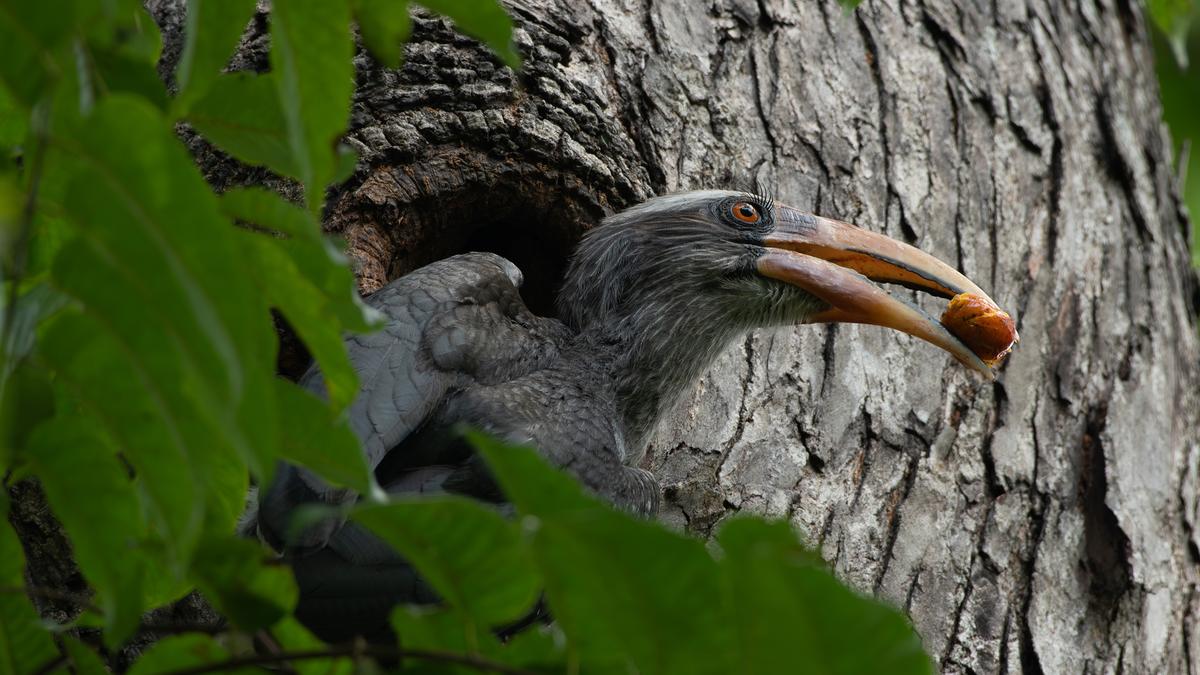
- 13 Apr 2025
In News:
A team of young researchers from Kerala has won the prestigious Future Conservationist Award by the Conservation Leadership Programme (CLP) for their community-driven project on conserving the Malabar Grey Hornbill in Wayanad.
About Malabar Grey Hornbill (Ocyceros griseus)
- Status: Vulnerable (IUCN Red List)
- Legal Protection: Schedule IV of the Wildlife Protection Act, 1972
- Endemic to: Western Ghatsand parts of the Nilgiris, Wayanad, and Anamalai Hills in Southern India.
- Habitat: Evergreen forests, plantations, and agricultural landscapes
- Ecological Importance: Cavity-nesting frugivore, plays a key role in seed dispersal
- Nesting Behavior:
- Nests in secondary cavities (e.g., old woodpecker hollows)
- Reuses the same nesting cavity for years
- Dependent on cavity-bearing trees, often outside protected areas
About the Future Conservationist Award (CLP)
- Awarded By:
- Fauna & Flora International
- BirdLife International
- Wildlife Conservation Society
- Purpose: Supports early-career conservationists with funding and mentorship
- Focus Areas: Field conservation, community engagement, biodiversity monitoring
Taiwan Strait
- 13 Apr 2025
In News:
China has recently launched aggressive military drills in the Taiwan Strait, heightening tensions in the region and drawing international concern over the stability of the Indo-Pacific.
About Taiwan Strait
- Location: Separates mainland China from the island of Taiwan.
- Connectivity: Links the South China Sea to the East China Sea.
- Width:
- Widest point: ~180 km
- Narrowest point: ~130 km
- Depth: Average of about 70 meters.
- Key Islands: Includes the Pescadores (Penghu) Islands, administered by Taiwan.
- Historical Name: Known as Formosa (meaning “Beautiful”) by Portuguese explorers in the 16th century.
Strategic and Economic Importance
- Maritime Trade Route:Nearly 40% of the world’s container ship traffic passes through the Taiwan Strait annually.
- Fisheries:One of China’s richest fishing zones, home to over 100 economically significant fish species.
Geopolitical and Historical Context
- Post-1949 Divide:Became a de facto boundary after the Nationalist government retreated to Taiwan post-Chinese Civil War.
- Taiwan Strait Crises:First Crisis (1954–55) and Second Crisis (1958) involved artillery attacks by the PRC on ROC-held islands.These crises prompted U.S. military support to Taiwan to prevent escalation.
Why it matters for India and the World
- Rising tensions in the Taiwan Strait could disrupt global trade and impact Indo-Pacific security.
- Strategic for India’s maritime interests and foreign policy under the Act East Policy and Indo-Pacific strategy.
BM-04 Missile
- 12 Apr 2025
In News:
India recently introduced the BM-04, a new-generation Short-Range Ballistic Missile (SRBM), during the Vigyan Vaibhav 2025 defence exhibition in Hyderabad. Developed by the Defence Research and Development Organisation (DRDO), the missile underscores India’s commitment to enhancing its conventional precision strike and counterforce capabilities.
Key Specifications and Features:
- Length: 10.2 metres
- Diameter: 1.2 metres
- Weight: Approximately 11,500 kg
- Propulsion: Dual-stage, solid-fuel system
- Range: Capable of striking targets up to 1,500 km away
- Warhead: Equipped with a 500 kg conventional payload
- Accuracy: Features a 30-metre Circular Error Probability (CEP)
Advanced Capabilities:
- Canisterized Launch System: Like other strategic missiles in India’s arsenal, the BM-04 is canisterized, enabling quicker launch readiness by pre-mating the warhead and delivery system.
- Mobile Deployment: Transported and launched via an indigenous six-wheeled Transport Erector Launcher (TEL), offering enhanced mobility and operational flexibility.
- Hypersonic Glide Body (C-HGB): The missile incorporates a Common Hypersonic Glide Body, allowing it to maneuver mid-flight, making its trajectory less predictable and improving its ability to evade missile defence systems, particularly in contested A2/AD environments.
- Modular Design: The BM-04 platform is designed for upgradability, supporting integration of advanced warheads, sensors, and propulsion technologies as threat perceptions evolve.
Strategic Significance:The induction of the BM-04 marks a leap in India’s tactical missile capability, bolstering its credible conventional deterrence posture. With precision targeting, improved survivability, and adaptability for future upgrades, the BM-04 is poised to play a vital role in India’s defence architecture.
Indian Star Tortoise
- 12 Apr 2025
In News:
In a significant conservation achievement under the Turtle Rehabilitation Project (TRP), 340 Indian Star Tortoises were successfully released into the wild at Jogapur Reserve Forest, located in Chandrapur district, Maharashtra.
Indian Star Tortoise (Geochelone elegans)
- IUCN Status:Vulnerable
- CITES Listing:Appendix I
- Protection under Indian Law:Schedule I, Wildlife (Protection) Act, 1972
Habitat & Range:
- Native to Northwest India, Southern India, and Sri Lanka
- Prefers arid and semi-arid ecosystems including scrublands, dry forests, grasslands, and semi-deserts
Key Characteristics:
- Recognizable by the radiating star-like patterns on its domed shell
- Faces high poaching pressure due to demand in the illegal exotic pet trade
- Exhibits crepuscular behavior (most active during dawn and dusk)
- Primarily herbivorous, consuming grasses, flowers, and leafy vegetation
Turtle Rehabilitation Project (TRP): A Conservation Initiative
- Launched: Late 2024; witnessed a major release event in April 2025
- Implemented By: Maharashtra Forest Department in collaboration with RESQ Charitable Trust
Objectives:
- Rescue and rehabilitate illegally trafficked tortoises and turtles
- Facilitate safe reintroduction into natural habitats through:
- Medical treatment
- Acclimatization to wild conditions
- Biometric tracking for post-release monitoring
- Raise public awareness via community engagement and school outreach
NaBFIDsigns strategic MoU with New Development Bank (NDB)
- 12 Apr 2025
In News:
The National Bank for Financing Infrastructure and Development (NaBFID) has entered into a strategic Memorandum of Understanding (MoU) with the New Development Bank (NDB) to strengthen cooperation in long-term infrastructure financing and promote clean energy development in India.
About NaBFID (National Bank for Financing Infrastructure and Development)
- Type: Development Finance Institution (DFI)
- Established Under:NaBFID Act, 2021
- Regulated By: Reserve Bank of India (RBI) as an All-India Financial Institution (AIFI)
Objectives:
- Bridge the gap in long-term, non-recourse infrastructure finance
- Support the development of India’s bond and derivatives markets
- Foster sustainable economic growth
- Enable project financing in clean energy, transport, and water infrastructure
Key Features:
- Capital base to be scaled up to ?1 trillion
- Focuses on medium to long-term financing (1–5+ years)
- Promotes Public-Private Partnerships (PPPs) and financial viability of projects
- Engages in joint research, capacity building, and knowledge-sharing with global institutions like NDB
About the New Development Bank (NDB)
- Type: Multilateral Development Bank formed by BRICS nations (Brazil, Russia, India, China, South Africa)
- Proposed: BRICS Summit, New Delhi (2012)
- Established By:Fortaleza Declaration, 15 July 2014
- Became Operational: 21 July 2015
Mandate:
- Mobilize funds for infrastructure and sustainable development
- Finance projects in emerging and developing economies (EMDCs)
- Promote green, inclusive, and resilient growth, particularly in clean energy, transport, and water sectors
Key Features:
- Authorized Capital: $100 billion
- India’s Contribution: $2 billion (paid in 7 tranches, 2015–2022)
- Engagement in India: As of December 2024, NDB has financed 20 projects worth $4.867 billion
Blue Washing of Polluting Industries
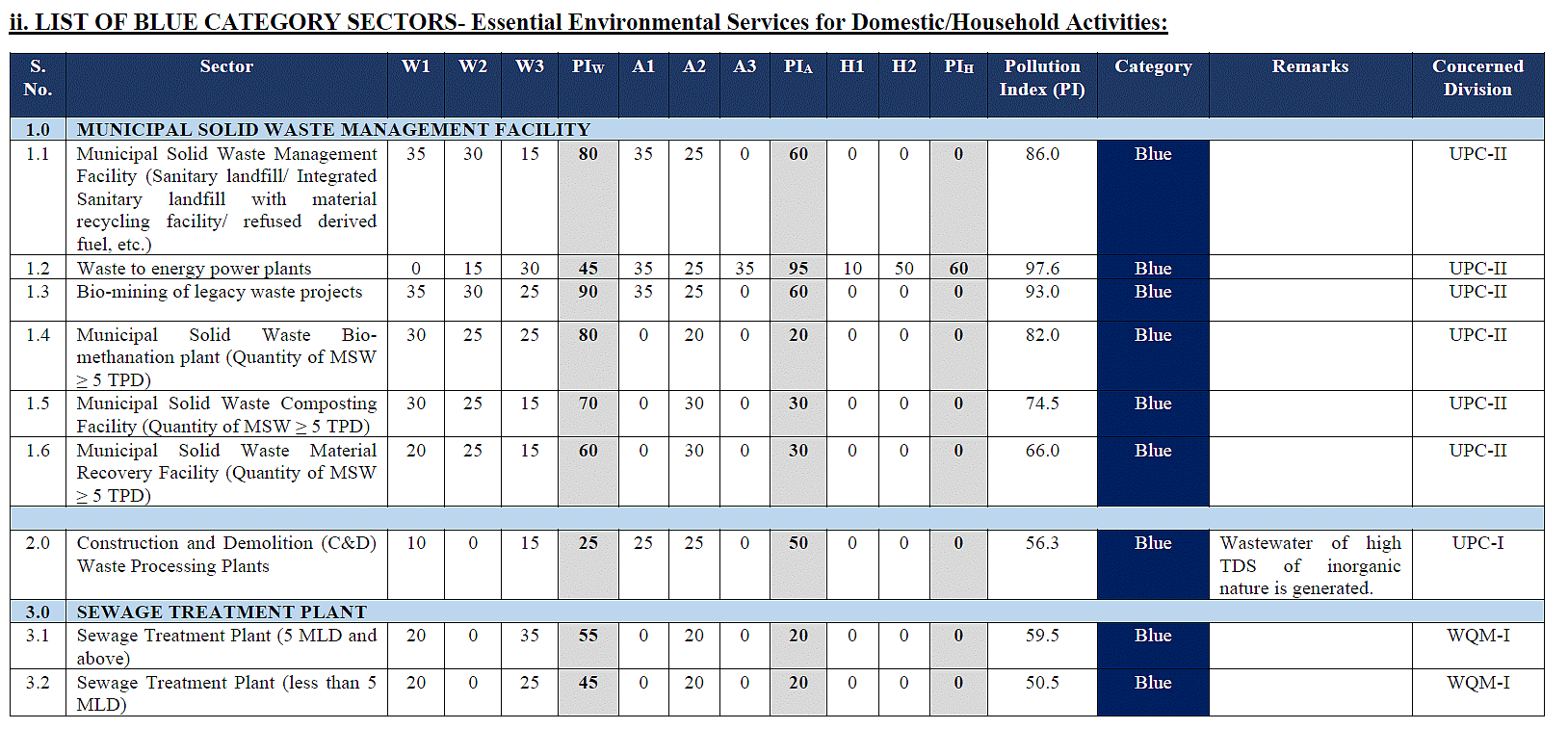
- 12 Apr 2025
In News:
- The Central Pollution Control Board (CPCB) has recently introduced a new ‘Blue Category’ for industries under its Essential Environmental Services (EES) framework.
- Notably, Waste-to-Energy (WTE) incineration plants, previously classified as highly polluting ‘Red Category’ industries, have now been controversially reclassified under this new category.
Background: Pollution Index (PI) and Industry Categorisation
- The Ministry of Environment, Forest and Climate Change (MoEFCC) classifies industries into categories — White, Green, Orange, and Red — based on a Pollution Index (PI) (0–100 scale).
- White (0–20): Least polluting
- Green (21–40)
- Orange (41–59)
- Red (60–100): Most polluting
- WTE plants, with a PI of 97.6, were originally in the Red Category.
What is the new Blue Category?
- Created under Essential Environmental Services (EES) classification.
- Grants 2 additional years of “Consent to Operate” (essentially, consent to pollute).
- Aims to support infrastructure like composting units, biogas plants, material recovery facilities, etc
Controversy: WTE Incineration in the Blue Category
- WTE plants burn unsegregated municipal solid waste (MSW) to generate electricity by producing steam to drive turbines.
- Unlike claimed benefits, WTE plants emit more CO? per unit of electricity than coal-fired plants, contributing to climate change.
- CPCB’s inspection reports found that Delhi’s WTE plants exceeded emission norms, releasing carcinogens and other pollutants such as:
- SOx, NOx, HCL, PM, Dioxins, and Furans
- In FY 2022–23, Delhi’s WTE plants incinerated ~735,840 tons of plastic, contributing significantly to Delhi’s poor air quality.
- These plants also generate hazardous ash, requiring secure landfill disposal.
Issues with Reclassification
- The CPCB’s own guidelines state that:
- Only projects that do not emit hazardous waste or
- Projects that promote the circular economy can be blue-listed.
- However, leading government institute CSIR-NEERI has observed that WTE plants violate the principles of the circular economy and contravene Solid Waste Management Rules, 2016.
- Reclassification undermines environmental safeguards, harms waste pickers’ livelihoods, and imposes financial burdens on Urban Local Bodies (ULBs).
Sunbird
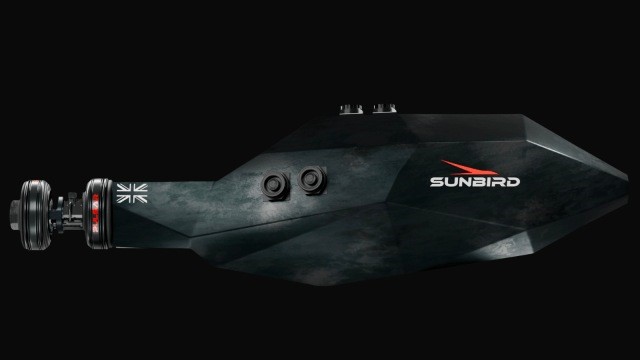
- 12 Apr 2025
In News:
British startup Pulsar Fusion is developing Sunbird, a nuclear fusion-powered rocket that could significantly reduce travel time to outer planets like Mars and Pluto. An orbital demonstration is planned for 2027.
Key Features of Sunbird
- Maximum Speed: Up to 805,000 km/h, surpassing the Parker Solar Probe (692,000 km/h), the fastest human-made object to date.
- Travel Efficiency: Could enable missions to Pluto in just 4 years, and cut travel time to Mars by nearly 50%.
- Payload Capacity: Capable of delivering up to 2,000 kg to Mars in six months.
- Functionality: Unlike chemical rockets like SpaceX’s Starship, Sunbird would act as an interplanetary booster, attaching to spacecraft and possibly operating between charging stations in Low Earth Orbit (LEO) and Mars orbit.
About Nuclear Fusion Propulsion
Nuclear Fusion aims to replicate the process that powers stars — the fusion of atomic nuclei to release energy. Unlike nuclear fission, fusion is cleaner, offers higher energy output, and produces minimal radioactive waste.
Types of Nuclear Propulsion Systems
Propulsion Type Description
Nuclear Thermal Propulsion (NTP) Uses a nuclear reactor to heat liquid hydrogen which
turns to plasma and produces thrust. Provides high exhaust
velocity and can increase payload efficiency 2–3 times
over chemical rockets. Ground tests began in the 1950s.
Nuclear Electric Propulsion (NEP) Converts reactor heat into electricity to power ion thrusters,
which gradually reach high speeds. Components include a
compact reactor core, electric generator, heat rejection
system, and electric propulsion system. Unlike solar power,
nuclear sources ensure consistent energy beyond Mars.
Challenges in Fusion Rocket Development
- Fusion systems are currently large and heavy, posing difficulties in miniaturisation for spaceflight.
- Fusion on Earth is hard to replicate due to atmospheric constraints; space offers a more natural environment for fusion reactions.
Global Efforts and Timeline
Apart from Pulsar Fusion, companies like Helicity Space and General Atomics (backed by NASA and Lockheed Martin) are also advancing fusion-powered space propulsion systems, with testing planned around 2027.
Trends in Maternal Mortality 2000–2023

- 11 Apr 2025
In News:
A recent United Nations report titled ‘Trends in Maternal Mortality 2000–2023’, released by the Maternal Mortality Estimation Inter-Agency Group (MMEIG), highlights global progress and setbacks in maternal health. While acknowledging India's significant gains, the report places India second in global maternal deaths, behind Nigeria.
India’s Maternal Mortality Statistics (2023)
- Maternal deaths in India: 19,000(7.2% of global total)
- Rank: Second globally, tied with the Democratic Republic of Congo
- MMR: Reduced from 362 per 1 lakh live births (2000) to 80 in 2023 — a 78% decline
- Global average decline: 40% (2000–2023), but India achieved 86% decline
- Comparison with Nigeria:
- Nigeria: 75,000 deaths, contributing 28.7% of global maternal deaths
- India's Health Ministry deemed the comparison unfair given population differences (India: 145 crore, Nigeria: 23.26 crore)
Definition and Importance of MMR
According to WHO, Maternal Mortality Ratio (MMR) refers to:
“The death of a woman during pregnancy or within 42 days of termination, from pregnancy-related causes excluding accidental ones.”
MMR is a critical indicator for assessing healthcare quality and maternal well-being.
UN Global Findings
- Estimated maternal deaths globally (2023): 260,000
- Daily deaths: Over 700 women; about one death every two minutes
- Leading causes: Post-partum haemorrhage, hypertensive disorders, infections
- SDG 3.1 Target: Reduce MMR to <70 per 1 lakh live births by 2030
India-Specific Causes of Maternal Deaths
- Medical reasons:
- Post-partum haemorrhage
- Hypertensive disorders (e.g. pre-eclampsia)
- Infections related to pregnancy
- Co-morbidities: Anaemia, diabetes, hypertension
- Systemic challenges:
- Inadequate emergency obstetric care at Primary Health Centres (PHCs) and Community Health Centres (CHCs)
- Lack of infrastructure, trained personnel, and referral systems
- Socio-economic backwardness and poor access to healthcare in northern India
Concerns Highlighted in the Report
- Slowing progress post-2016 despite early improvements
- Humanitarian funding cuts impacting:
- Health worker retention
- Facility operations
- Availability of essential drugs (for haemorrhage, malaria, pre-eclampsia)
- Disruption in maternal care supply chains, especially in low-resource regions
India’s Stand
The Union Health Ministry has contested comparisons with smaller nations like Nigeria, asserting that India's maternal health progress is notable given its large population. The Ministry emphasized the 86% decline in MMR since 1990, as opposed to a global decline of 48% in the same period.
Accommodative Stance of Monetary Policy
- 11 Apr 2025
In News:
In its latest Monetary Policy Committee (MPC) meeting, the RBI decided to retain the accommodative stance amid signs of moderating inflation and sluggish economic growth. This was intended to support the ongoing recovery and ensure credit availability in key sectors.
Definition:
An accommodative stance is a monetary policy approach adopted by central banks, such as the Reserve Bank of India (RBI), to stimulate economic activity. It generally involves:
- Keeping interest rates low
- Injecting liquidity into the financial system
This stance signals that the central bank is open to reducing rates further or maintaining low rates for an extended period to support growth and demand.
When is it Adopted?
The RBI typically adopts an accommodative stance during:
- Slowing or below-potential economic growth
- Low or stable inflation within the RBI’s target range
- Need to revive consumption, investment, and employment
- Response to domestic or global financial shocks and uncertainties
Objectives
The main aims of an accommodative stance include:
- Boosting credit flow and private investment
- Encouraging borrowing and spending
- Supporting aggregate demand revival
- Providing liquidity relief to stressed sectors
- Promoting employment generation
Key Monetary Tools Used by RBI
To implement an accommodative stance, the RBI uses several instruments:
- Repo Rate Reduction:
- Lowers the cost of borrowing for commercial banks.
- Encourages banks to lend more to businesses and consumers.
- Open Market Operations (OMOs):RBI buys government securities to infuse liquidity into the market.
- Long-Term Repo Operations (LTROs):Provides long-term funding to banks at low interest rates.
- Cash Reserve Ratio (CRR) Adjustments:Temporarily lowering CRR increases the funds available for lending.
- Moral Suasion & Regulatory Forbearance:RBI encourages banks to maintain or enhance credit flow, especially to priority and stressed sectors.
Arctic Biome: From Carbon Sink to Carbon Source
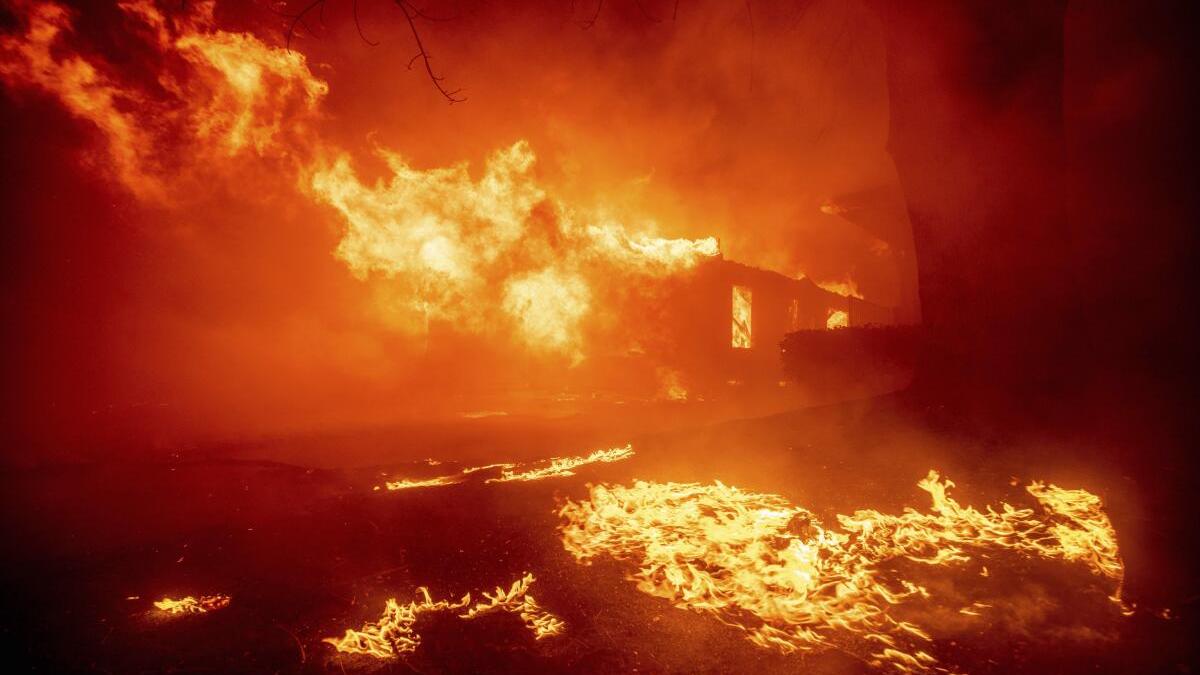
- 11 Apr 2025
Context:
- The Arctic biome, primarily a treeless tundra, spans approximately 11.5 million km² and includes regions in Canada, Greenland, Iceland, and Eurasia.
- It is characterized by permafrost (permanently frozen ground) close to the surface, limiting plant root growth.
- Vegetation consists of grasses, lichens, mosses, and low shrubs, while fauna includes polar bears, arctic foxes, caribou, musk ox, and migratory birds like snow geese.
- Climatic conditions are harsh, with temperatures ranging from -60°C in winter to 15.5°C in summer, and annual precipitation between 150–250 mm, mostly as snow.
- Despite nutrient-poor soils, the biome has functioned as a major carbon sink by storing carbon in peat and humus.
The Arctic Boreal Zone (ABZ) and Carbon Dynamics
The Arctic Boreal Zone (ABZ), which includes tundra, coniferous forests, and wetlands, has historically played a crucial role in global carbon sequestration. Its coniferous forests form the largest land-based biome on Earth.
However, recent studies, including one in Nature Climate Change (2025), indicate that over 30% of the ABZ has shifted from being a carbon sink to a carbon source. This reversal is primarily driven by:
- Permafrost thawing: Warmer topsoil temperatures lead to decomposition of organic matter, releasing CO? and methane.
- Frequent and intense wildfires: These burn organic-rich soils, releasing large volumes of carbon.
This transition creates a positive feedback loop: Wildfires release carbon → global temperatures rise → permafrost thaws → more emissions → more fires.
Fire Trends and Global Impact
Data from the Copernicus Atmosphere Monitoring Service (CAMS) reveal that wildfires released 800,000 tonnes of carbon in January 2025 alone, nearly 4 times more than in the same period a decade ago.
Key wildfire incidents include:
- Texas and Oklahoma (USA): Destroyed 14,000+ structures, burned 16,000 hectares, and displaced thousands.
- Ofunato City (Japan): One of the country’s largest fires in 50 years, affecting nearly 2,900 hectares.
According to the India State of Forest Report (Dec 2024):
- Uttarakhand recorded the highest number of forest fires (5,315 fires) between Nov 2022–June 2023.
- However, fire hotspots are declining: 2.23 lakh (2021–22) → 2.12 lakh (2022–23) → 2.03 lakh (2023–24).
India’s Changing Fire and Climate Profile
Research by IIT Kharagpur and the Indian Institute of Tropical Meteorology shows that land temperatures in northwest, northeast, and central India are rising by:
- 0.1–0.3°C/decade (pre-monsoon)
- 0.2–0.4°C/decade (post-monsoon)
This trend has led to earlier, longer, and slower-moving heatwaves, increasing wildfire vulnerability. India emits an estimated 69 million tonnes of CO? annually from forest fires.
Key Findings from the 2024 Arctic Report Card (NOAA)
The U.S. National Oceanic and Atmospheric Administration (NOAA) confirms that the Arctic tundra is becoming a carbon source, exacerbated by fossil fuel pollution and recurrent wildfires. According to NOAA, this shift reflects persistent, long-term climate trends, not mere variability.
A global study of 200 monitoring sites (1990–2020) found:
- Alaska contributed 44% of the ABZ’s new carbon emissions.
- Northern Europe and Siberia added 25% and 13%, respectively.
- Non-summer months now emit more carbon than the entire summer absorption.
Historical fire events like the 2003 Siberian fires and the 2012 Timmins fire (Canada) significantly accelerated this trend.
M-CADWM Scheme

- 11 Apr 2025
In News:
The Union Cabinet has approved the Modernisation of Command Area Development and Water Management (M-CADWM) scheme as a sub-scheme of the Pradhan Mantri Krishi Sinchayee Yojana (PMKSY). The scheme will be implemented during 2025–26 with an initial outlay of ?1,600 crore.
Background
- PMKSY was launched in 2015-16 to expand the cultivable area under assured irrigation, improve on-farm water use efficiency, and enhance access to water at the farm level.
- The Command Area Development and Water Management (CAD&WM)programme was first initiated in 1974-75, and restructured in 2004. It has been implemented under PMKSY - Har Khet Ko Pani since 2015-16.
Objectives of M-CADWM
- Modernize the irrigation water supply network to ensure efficient delivery from existing canals or other sources to farming clusters.
- Enhance Water Use Efficiency (WUE) and promote sustainable agricultural practices.
Key Features
- Technological Integration:Adoption of SCADA (Supervisory Control and Data Acquisition) and Internet of Things (IoT) for real-time water accounting and monitoring.
- Infrastructure Development:Installation of underground pressurised piped irrigation systems up to 1 hectare per farm, supporting micro-irrigation from source to farm gate.
- Sustainable Water Management:
- Implementation of Irrigation Management Transfer (IMT) to Water User Societies (WUS).
- These societies will be supported for five years and linked with Farmer Producer Organisations (FPOs) and Primary Agricultural Cooperative Societies (PACS) to strengthen local management.
- Youth Engagement:The scheme aims to attract youth to agriculture by promoting the use of modern irrigation technologies and creating opportunities in agrarian entrepreneurship.
Components of CAD&WM (Under PMKSY)
- Structural Interventions:On-Farm Development (OFD) works, construction of field, intermediate and link drains.
- Non-Structural Interventions:One-time functional grants to registered Water Users’ Associations (WUAs), capacity building, demonstrations, and adaptive trials to promote efficient water use.
Expected Outcomes
- Improved irrigation efficiency and agricultural productivity.
- Enhanced water conservation and equity in water distribution.
- Strengthened community participation in irrigation management.
- Boost to rural employment and agriculture modernization.
Cafe Rista
- 11 Apr 2025
In News:
The Uttar Pradesh Police has taken a unique step to humanize policing and strengthen community engagement through the launch of Cafe Rista—a public-friendly café located within the Noida Police Commissionerate, Sector 108. This initiative is an example of citizen-centric policing aimed at improving the image of law enforcement and promoting positive interactions with the public.
Key Highlights:
- Launched by:The café is the brainchild of IPS officers Laxmi Singh and Babloo Kumar, with active public outreach by IPS Preeti Yadav, who brought attention to the initiative through a viral social media video.
- What is Cafe Rista?
It is a pastel-themed, aesthetically pleasing café designed to serve affordable, hygienic, and tasty meals to both civilians and police personnel. The ambiance is warm and welcoming, featuring quirky motivational quotes and a calming decor.
- Strategic Location:The café is situated close to the Family Dispute Resolution Clinic within the Commissionerate. This proximity serves a dual purpose:
- It offers a space of relaxation for families and individuals undergoing counselling or dispute mediation.
- It provides psychological respite for those visiting under stressful circumstances.
Objectives of the Initiative:
- Break Stereotypes:Challenge the conventional perception of the police as unapproachable or intimidating by creating an informal and friendly setting.
- Promote Informal Engagement:Encourage dialogue and trust-building between civilians and police personnel in a relaxed, non-threatening environment.
- Support Mental Well-Being:The café contributes to the morale and mental wellness of both the public and police officers, especially those on demanding duties.
- Welfare Policing Model:Aligns with the concept of "welfare policing", wherein the police function not only as enforcers of law but also as community caretakers.
- Public Outreach through Social Media:The initiative leverages platforms like Instagram and Twitter to showcase the human side of policing, creating transparency and relatability.
IISc Develops Nanozyme to Prevent Excessive Blood Clotting

- 07 Jun 2025
In News:
Researchers at the Indian Institute of Science (IISc), Bengaluru have developed a novel vanadium-based nanozyme that effectively controls abnormal blood clotting by reducing reactive oxygen species (ROS). This innovation holds promise for managing life-threatening conditions like pulmonary thromboembolism (PTE) and ischemic stroke.
Scientific Background:
- Normal Blood Clotting: Platelets are specialized blood cells that form clots at injury sites through a process called haemostasis, involving activation by physiological chemicals like collagen and thrombin.
- Problem of Abnormal Clotting: In conditions like COVID-19 and PTE, oxidative stress increases, leading to elevated ROS levels. This causes hyperactivation of platelets, resulting in excessive clot formation (thrombosis) — a leading cause of death globally.
Nanozyme Innovation by IISc:
- What is a Nanozyme?
An engineered nanomaterial that mimics the action of natural enzymes, in this case, glutathione peroxidase, which neutralizes ROS.
- Material Used: Vanadium pentoxide (V?O?) nanozymes, particularly those with spherical morphology, were found to be the most efficient.
- Mechanism: The redox-active surface of vanadium nanozymes catalytically reduces ROS, preventing unwanted platelet aggregation.
Testing and Results:
- In vitro testing: Human blood platelets were activated with physiological agonists. Nanozymes were tested for their ability to curb excessive aggregation.
- In vivo testing (mouse model of PTE):
- Nanozyme injection led to reduced thrombosis.
- Improved survival rates without observable toxicity.
- Animals were monitored for 5 days post-treatment for health parameters.
Future Prospects:
- Researchers aim to test the nanozyme's potential against ischemic strokes, which also result from vascular blockages.
- Encouraging results with human platelets indicate the possibility of clinical trials in the near future.
Kerch Strait and Recent Developments
- 07 Jun 2025
In News:
Ukraine has claimed responsibility for a recent underwater explosion that damaged the Kerch Bridge, a critical transport link connecting mainland Russia to occupied Crimea. The attack underscores the strategic importance of the Kerch Strait in the ongoing Russia-Ukraine conflict.
Kerch Strait: Geographical and Strategic Overview
- Location: The Kerch Strait forms the only maritime passage between the Black Sea and the Sea of Azov.
- Geographical Boundaries:
- West: Kerch Peninsula (Crimea)
- East: Taman Peninsula (Russia)
- Width: Narrows to 3–5 km at its tightest point near the Chushka Spit.
- Nearby City: Kerch, located on the Crimean side, lies near the strait’s midsection.
- Strategic Importance:
- A vital shipping lane for transporting goods and military supplies.
- Gained heightened geopolitical importance after Russia's annexation of Crimea in 2014.
- Frequently features in Russia–Ukraine maritime tensions.
Kerch Strait Bridge (Crimean Bridge)
- Length: 19 km, making it the longest bridge in Europe.
- Completed: In 2018
- Connectivity: Includes dual road and railway tracks, linking the Russian mainland to Crimea.
- Symbolism: Considered a symbol of Russia’s control over Crimea post-2014 annexation.
- Strategic Use: Facilitates military logistics and civilian transit; crucial for sustaining Russian presence in Crimea.
Diphtheria Outbreak in Western Europe – 2022 Onwards

- 07 Jun 2025
In News:
Western Europe is experiencing its largest diphtheria outbreak in 70 years, with cases predominantly among vulnerable groups such as migrants and the homeless. The outbreak, which began in 2022, has raised concerns over disease surveillance, migrant healthcare, and immunisation coverage.
Key Facts from the Outbreak
- As per a study in the New England Journal of Medicine, 536 cases and three deaths have been reported across Europe since 2022.
- Most cases were found among young males (average age: 18) who had recently migrated, particularly from Afghanistan and Syria.
- 98% of strains exhibited close genetic similarities, suggesting a common transmission point during migration journeys or in accommodation facilities, not in the countries of origin.
- A genetic match between the 2022 strains and a recent 2025 case in Germany indicates that the bacteria is still circulating silently in the region.
Recommendations from Health Experts
- Enhance vaccination drives, particularly among high-risk and underserved populations.
- Improve awareness among healthcare providers, especially those working with migrants and the homeless.
- Ensure better access to antibiotics and diphtheria antitoxins.
- Strengthen disease surveillance and contact tracing mechanisms.
About Diphtheria
Feature Details
Cause Corynebacterium diphtheriae (produces a potent toxin)
Mode of Spread Respiratory droplets, contact with infected sores or ulcers
Affected Areas Primarily the respiratory tract, but also the skin in some cases
Symptoms Sore throat, fever, swollen lymph nodes, weakness; grey membrane in throat
Severe Impact Can lead to breathing difficulties, heart and kidney damage, and neurological issues if untreated
Treatment Diphtheria Antitoxin (DAT), antibiotics, and supportive care
Fatality Rate Up to 30% in unvaccinated individuals; higher in children
Prevention Vaccination (DPT/DTP) is the most effective preventive measure
Greater Flamingo Sanctuary
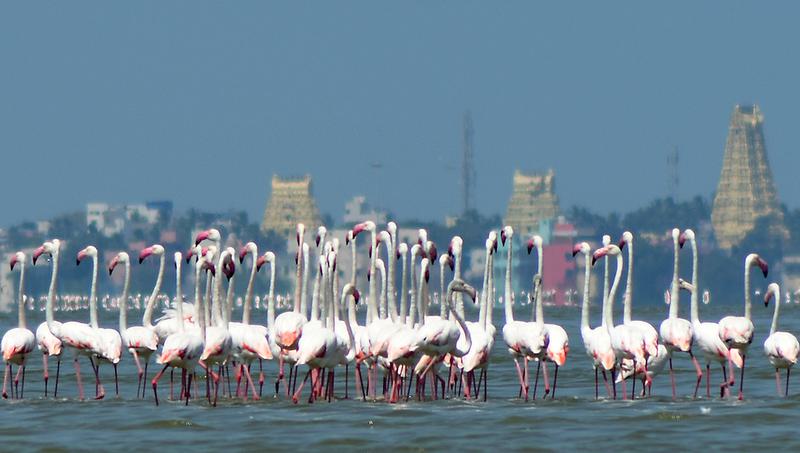
- 07 Jun 2025
In News:
On the occasion of World Environment Day 2025, the Tamil Nadu government officially declared the Greater Flamingo Sanctuary at Dhanushkodi, Ramanathapuram district, aiming to protect a vital stopover site for migratory birds along the Central Asian Flyway.
Key Highlights
What is it?
A newly notified wildlife sanctuary dedicated to safeguarding migratory wetland birds, especially the greater flamingo (Phoenicopterus roseus), in their natural resting and breeding habitat.
Location and Area:
- Located in Rameshwaram taluk, Ramanathapuram district, Tamil Nadu.
- Covers approximately 524.7 hectares of revenue and forest land.
- Lies within the Gulf of Mannar Biosphere Reserve, a globally recognized marine ecosystem.
Ecological Significance
- Functions as a critical site along the Central Asian Flyway, one of the key migratory bird routes.
- As per the 2023–24 Wetland Bird Survey, the region hosts 10,700+ wetland birds representing 128 species, including:
- Flamingos (greater and lesser)
- Herons, egrets, sandpipers, etc.
- The sanctuary harbours diverse ecosystems, such as:
- Mangroves (Avicennia, Rhizophora)
- Mudflats, marshes, sand dunes, and lagoons
- Nesting grounds for sea turtles and marine biodiversity
Conservation and Socioeconomic Benefits
- Strengthens coastal resilience by preventing erosion through natural mangrove buffers.
- Promotes responsible ecotourism, raising awareness of wetland and avian conservation.
- Supports local livelihoods via employment in conservation and tourism activities.
About the Greater Flamingo (Phoenicopterus roseus)
Attribute Details
Size 90–150 cm tall, long necks and legs
Coloration Pink hue from carotenoid-rich diet
Feeding Uses specialized downward-curved bill for filter feeding in shallow waters
Reproduction Builds cone-shaped mud nests, lays 1–2 eggs, both parents incubate
Chick Rearing Chicks are white and fed through regurgitation
Social Traits Highly gregarious, breeds in large colonies and flies in V-formations
Behavioral Note Often seen standing on one leg, possibly to conserve body heat
SEBI’s Operational Framework for ESG Debt Securities
- 07 Jun 2025
In News:
The Securities and Exchange Board of India (SEBI) has introduced a comprehensive operational framework for the issuance of Environmental, Social, and Governance (ESG) debt securities. This includes instruments such as social bonds, sustainability bonds, and sustainability-linked bonds, aiming to boost responsible financing in India.
Understanding ESG Debt Securities
Definition:
ESG debt securities are financial tools designed to raise capital specifically for projects that yield positive environmental, social, or governance (ESG) outcomes. These instruments are a key part of sustainable finance, with categories including:
- Social Bonds: Focused on projects with direct social impact (e.g., affordable housing, education).
- Sustainability Bonds: Target projects with both environmental and social objectives.
- Sustainability-Linked Bonds: Tied to specific ESG performance indicators or targets.
Salient Features:
- Funds raised must be used exclusively for eligible ESG-aligned projects.
- Bonds must be clearly labelled in line with the project's primary focus.
- Compliance with global ESG norms and standards is mandatory.
- Verification or certification by an independent third-party is required.
- The framework applies to both public and private debt offerings.
Highlights of SEBI’s Framework
1. Classification Guidelines: Issuers are required to categorize their bonds—green, social, or sustainability—based on the core objective of the projects being financed. This ensures transparent communication of the bond's intended impact.
2. Disclosure Norms:
- At the Issuance Stage: Offer documents must detail project eligibility, selection methodology, and a tentative allocation between financing new initiatives and refinancing existing ones.
- Post-Issuance: Issuers must provide annual updates on fund deployment and report impact metrics to demonstrate accountability and transparency.
3. Independent Assurance: Issuers must engage accredited third-party entities to validate the alignment of bonds with ESG principles, thereby enhancing investor confidence and market integrity.
4. Monitoring and Evaluation: There is an obligation for ongoing impact assessment. Issuers must ensure the projects funded effectively contribute to reducing environmental degradation or addressing social challenges.
5. Scope and Enforcement: The framework will come into effect from June 5, 2025, and is aligned with international ESG standards to facilitate greater inflow of sustainable and ethical investments.
Significance for India: This move marks a significant step in mainstreaming ESG finance in India. It aims to improve transparency, attract climate-conscious capital, and reinforce India’s commitment to sustainable development.
Waste Picker Enumeration App

- 06 Jun 2025
In News:
On World Environment Day 2025, the Ministry of Social Justice and Empowerment (MoSJE) launched the Waste Picker Enumeration App under the NAMASTE Scheme, reaffirming the government’s commitment to environmental justice and the dignity of sanitation workers.
What is the NAMASTE Scheme?
- Full Form: National Action for Mechanised Sanitation Ecosystem
- Type: Central Sector Scheme (CSS)
- Launched: July 2023
- Nodal Ministry: Ministry of Social Justice and Empowerment (MoSJE)
- Partner Ministry: Ministry of Housing and Urban Affairs (MoHUA)
- Implementing Agency: National Safai Karamcharis Finance & Development Corporation (NSKFDC)
- Objective: To formalize and rehabilitate sanitation workers and integrate them into formal systems through skilling, social security, and mechanization of hazardous cleaning work.
- Inclusion of Waste Pickers (From June 2024): The NAMASTE Scheme expanded its scope in June 2024 to include Waste Pickers, recognizing their critical role in the circular economy and solid waste management.
Waste Picker Enumeration App – Key Highlights
- Purpose: Digital platform for profiling 2.5 lakh waste pickers across India.
- Recognition: Provides occupational photo ID cards and formal identity to waste pickers.
- Social Security:
- Health coverage under Ayushman Bharat–PM-JAY
- Distribution of PPE kits and seasonal safety gear
- Livelihood & Skilling:
- Skill development programs
- Capital subsidies for waste collection vehicles
- Empowerment:
- Strengthening of Waste Picker Collectives
- Management of 750 Dry Waste Collection Centres (DWCCs) in urban areas
Udhampur-Srinagar-Baramulla Rail Link (USBRL)
- 06 Jun 2025
In News:
The Udhampur-Srinagar-Baramulla Rail Link (USBRL) is a transformative 272-km railway project aimed at connecting the Kashmir Valley to the Indian Railways network. With Prime Minister Narendra Modi inaugurating the Chenab Rail Bridge and flagging off Vande Bharat trains in June 2025, the project nears full operationalization.
Key Details:
Chenab Rail Bridge – World’s Highest Railway Arch Bridge
- Height: 359 metres above riverbed (taller than the Eiffel Tower).
- Length: 1,315 metres; Arch span: 467 metres.
- Status: Highest railway arch bridge in the world.
- Engineering feat in Reasi district, Jammu and Kashmir.
Strategic All-Weather Connectivity
- Reduces dependency on the Srinagar-Jammu highway, which is prone to closure due to snow and landslides.
- Ensures year-round transportation and supply lines.
Enhanced Military Mobility
- Enables rapid movement of troops and equipment to border regions.
- Crucial for national security due to the region's proximity to international borders.
- Designed to withstand blasts and harsh weather.
Anji Bridge – India’s First Cable-Stayed Rail Bridge
- Length: 473 metres; Height: 331 metres.
- Located on the Katra-Banihal section.
- Supported by 48 cables, suitable for rugged Himalayan terrain.
Vande Bharat Connectivity
- High-speed trains introduced on Katra–Srinagar route.
- Improves passenger comfort and reduces travel time.
Economic Boost via Trade
- Improves market access for Kashmiri products: apples, saffron, handicrafts, and dry fruits.
- Facilitates faster freight movement, integrating the region into national trade networks.
Tourism Promotion
- Easier access to religious and scenic sites.
- Expected to boost tourism post disruptions (e.g., Pahalgam incident).
- Cheaper and faster rail travel enhances domestic footfall.
Engineering Resilience
- Chenab Bridge:
- Blast-resistant (withstands up to 40 kg TNT).
- Wind resistant (up to 260 kmph).
- Seismic-resilient with a 120-year design life.
- Symbol of India’s capability in building infrastructure in high-risk zones.
Time Efficiency
- Travel time between Jammu and Srinagar will reduce from 6 hours (by road) to 3–3.5 hours (by rail).
- Facilitates emergency services, logistics, and routine travel.
National Integration and Inclusion
- 943 bridges, 36 tunnels covering 119 km — overcoming Himalayan terrain challenges.
- Integrates remote districts of Jammu & Kashmir into India's railway grid.
- Promotes inclusive development and better governance outreach.
Ayush Nivesh Saarthi
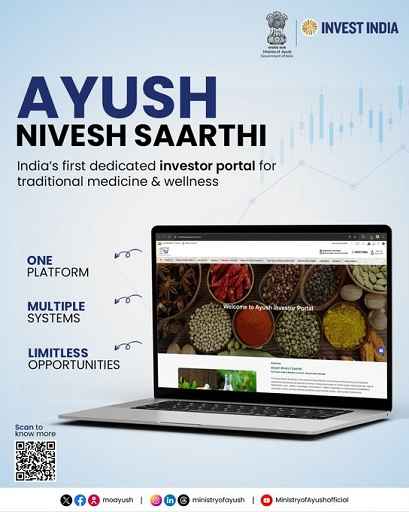
- 06 Jun 2025
In News:
Recently, the Government of India launched the ‘Ayush Nivesh Saarthi’ portal—a digital initiative aimed at positioning India as a global hub for traditional medicine investment. The launch took place during the Ayush Stakeholder/Industry Interaction Meet held at Vanijya Bhawan, New Delhi.
- Developed by: Ministry of Ayush in collaboration with Invest India
Objective of the Portal
- To facilitate investment in India’s Ayush sector through a dedicated digital interface.
- To bring together policy frameworks, incentives, investment-ready projects, and real-time facilitation.
- To strengthen India’s position as a global investment destination for traditional systems of medicine.
Portal Features
- Investor-centric platform integrating:
- Investment promotion schemes
- Real-time data and policy information
- Single-window facilitation
- Supports both domestic and foreign investors
- Offers transparency, ease of access, and sectoral insights
Sectoral Significance
- Growth Rate: The Ayush sector recorded an annual growth rate of 17% (2014–2020).
- Medicinal Wealth: India is home to 8,000+ medicinal plant species.
- Global Recognition: Ayush is among the top five health services in India and contributes significantly to the USD 13 billion Medical Value Travel (MVT) sector.
Investment Facilitation
- 100% Foreign Direct Investment (FDI) is permitted in the Ayush sector through the automatic route.
- The portal aims to attract FDI and empower entrepreneurs through digital governance and investment transparency.
EnviStats India 2025
- 06 Jun 2025
In News:
India's annual mean temperature rise up from 25.05°C in 2001 to 25.74°C in 2024, Electricity generation from renewable sources increased more than three times in 10 years.
- Released by: Ministry of Statistics and Programme Implementation (MoSPI) on June 5, 2025, on the occasion of World Environment Day
- Framework Used: UN's Framework for the Development of Environment Statistics (FDES 2013)
Key Highlights:
Climate Trends
- Annual Mean Temperature rose from 25.05°C (2001) to 25.74°C (2024).
- 2024 recorded as India’s hottest year since 1901; also, globally the hottest year in 175 years.
- Annual Minimum and Maximum Temperatures (2021–24):
- Minimum: 19.32°C → 20.24°C
- Maximum: 30.78°C → 31.25°C
Rainfall Patterns
- Rainfall shows seasonal concentration between June–September, with signs of shifting patterns such as late onset or extended rains into October.
- No clear long-term trend, reflecting erratic monsoonal behaviour.
Energy Generation
Thermal & Renewable Power (2013–14 to 2023–24)
- Thermal: 7.92 lakh GWh → 13.26 lakh GWh
- Renewable: 65,520 GWh → 2.25 lakh GWh, over 3x increase in renewable energy output in a decade.
Biodiversity and Faunal Statistics
Faunal Diversity
- Global Faunal Species: 16,73,627
- India's Share: 1,04,561 species
- Habitat-specific Species in India:
- Soil Ecosystem: 22,404
- Freshwater Ecosystem: 9,436
- Mangrove System: 5,023
- Estuarine Ecosystem: 3,383
- Marine Fauna (India): 20,613 out of global 2,47,605
Fisheries Production
Inland vs. Marine Fish (2013–14 to 2023–24)
- Inland Fish Production: 61 lakh tonnes → 139 lakh tonnes
- Marine Fish Production: 34 lakh tonnes → 45 lakh tonnes
Public Expenditure (2021–22)
- Environment Sustainability Sector: ?2,433 crore (highest among sectors)
- Conservation of Natural Resources: Increasing trend
- Agro-Forestry: Lowest allocation
New Data indicators introduced
- Ramsar sites
- Access to sanitation
- Transport infrastructure
- Electricity access
Bar Council of India permits Foreign Lawyers in India
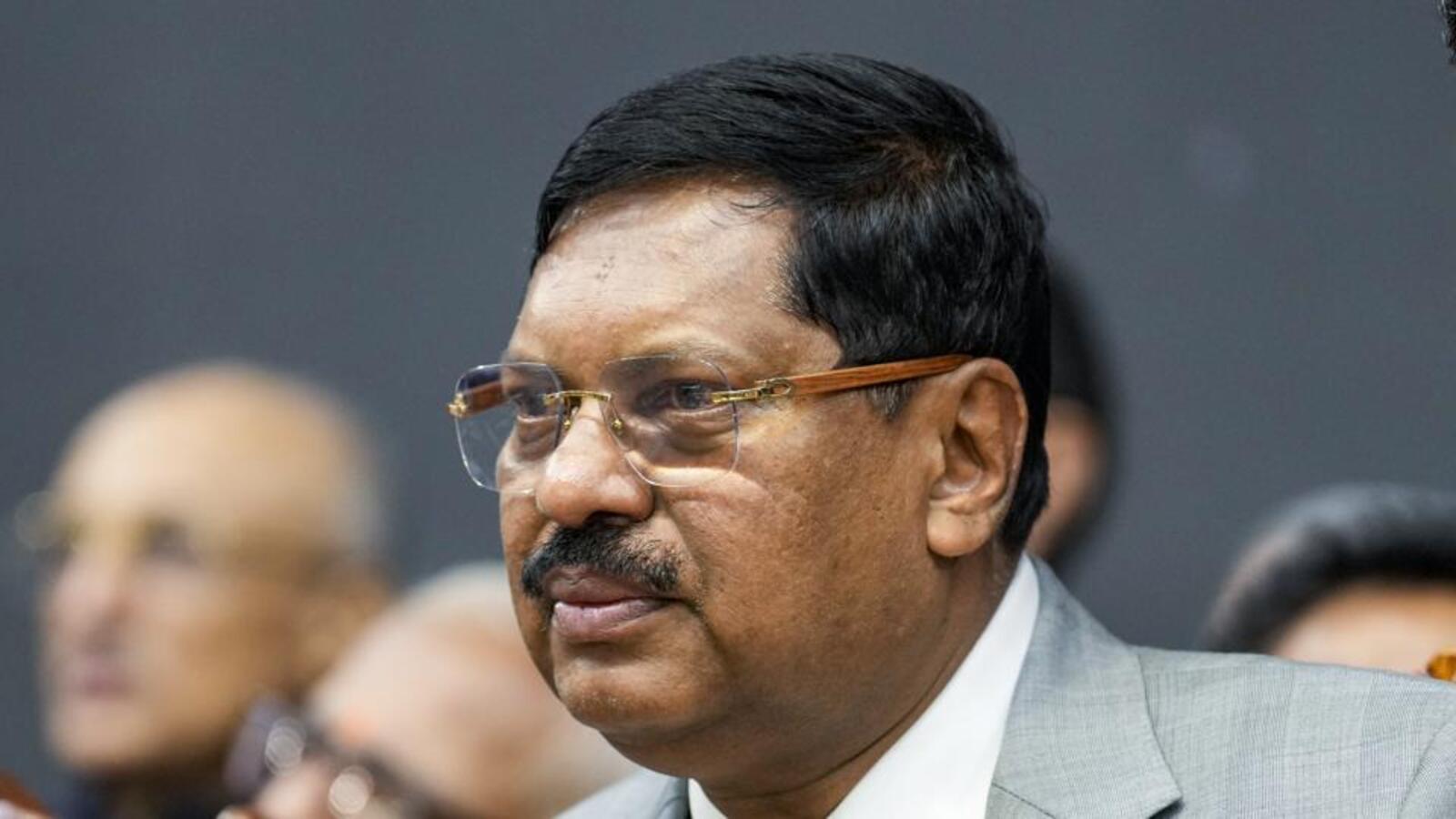
- 06 Jun 2025
In News:
Chief Justice of India (CJI) B.R. Gavai lauded the Bar Council of India (BCI) for amending rules to allow foreign legal professionals and law firms to advise on non-litigious matters in India.
Key Features of BCI’s Reform (2024 Update to 2022 Rules):
- Scope of Practice for Foreign Lawyers:
- Permitted: Advisory roles in foreign law, international law, and arbitration.
- Prohibited: Appearing in Indian courts/tribunals or advising on Indian law.
- Nature of Work Allowed: Only non-litigious activities.
Rationale Behind the Reform:
- Boosting Arbitration Quality:
- India ranks 5th globally in arbitration case volume (ICC 2024 Report).
- Reform aimed at enhancing arbitration standards via foreign expertise.
- Facilitating Legal Reciprocity:
- Enables Indian lawyers to access international legal markets.
- Promotes mutual recognition and cooperation with foreign bar associations.
- Supporting Institutional Arbitration:
- Benefits centres like:
- Mumbai Centre for International Arbitration (MCIA)
- Delhi International Arbitration Centre (DIAC)
- India International Arbitration Centre (IIAC)
- Benefits centres like:
- Filling Talent Gaps:
- Expertise needed in fields such as:
- Climate litigation
- Technology and data law
- Cross-border commercial arbitration
- Expertise needed in fields such as:
Challenges and Concerns:
- Market Displacement Fears: Indian lawyers worry about reduced share in arbitration and consultancy services.
- Reciprocity Barriers: Unequal treatment in countries with restrictive legal entry norms.
- Uneven Playing Field: Foreign firms possess larger capital, advanced tech, and international clientele.
- Regulatory Oversight Needed: BCI must ensure strict compliance to maintain sovereignty of Indian legal framework.
Significance of the Reform:
- Positioning India as an Arbitration Hub: Enhances India's global legal profile, especially in infrastructure and trade.
- Strengthening Indo-UK Legal Cooperation: Reform highlighted during Indo-UK Arbitration Conference, deepening bilateral ties.
- Modernizing Legal Sector: Brings global legal best practices and innovation to India.
- Upholding Indian Legal Integrity: Complies with the Advocates Act, 1961 – no foreign practice in Indian law.
- Opportunities for Indian Lawyers Abroad: Reciprocity clause allows dual practice in India and foreign jurisdictions.
C CARES Version 2.0
- 05 Jun 2025
In News:
The Ministry of Coal recently launched C CARES Version 2.0, a significant upgrade to the Coal Mines Provident Fund Organization’s (CMPFO) digital platform. The new system aims to enhance transparency, efficiency, and accessibility in provident fund (PF) and pension disbursement for coal sector workers.
Key Features of C CARES Version 2.0
- Developed by the Centre for Development of Advanced Computing (C-DAC) in collaboration with the State Bank of India (SBI).
- Provides a unified digital interface for coal workers, coal companies, and CMPFO.
- Enables real-time claim tracking, automated ledger updates, and direct benefit transfers to workers’ bank accounts.
- Includes a mobile application for CMPF members, offering:
- PF balance checks
- Profile viewing
- Grievance redressal
- Claim status tracking
- A chatbot assistant for easy navigation
Benefits to Stakeholders
- For Workers: Faster claim settlement, improved access, and reduced delays in PF/pension disbursement.
- For Coal Companies and CMPFO:
- A prescriptive dashboard to generate custom reports.
- Analytics to track settlement trends.
- Support for data-driven decision-making.
About CMPFO
- Full Form: Coal Mines Provident Fund Organization
- Established: 1948
- Parent Ministry: Ministry of Coal
- Function: Administration of PF and pension schemes for coal sector employees.
- Coverage:
- Serves around 3.3 lakh PF subscribers
- Supports over 6.3 lakh pensioners
Significance
Union Minister for Coal and Mines G. Kishan Reddy launched the portal on June 4, 2025, stating that it aligns with the Government's vision of “Minimum Government, Maximum Governance” under the Digital India initiative. The platform strengthens social security delivery for coal workers and brings administrative reform to a critical sector of the economy.
International Institute of Administrative Sciences (IIAS)
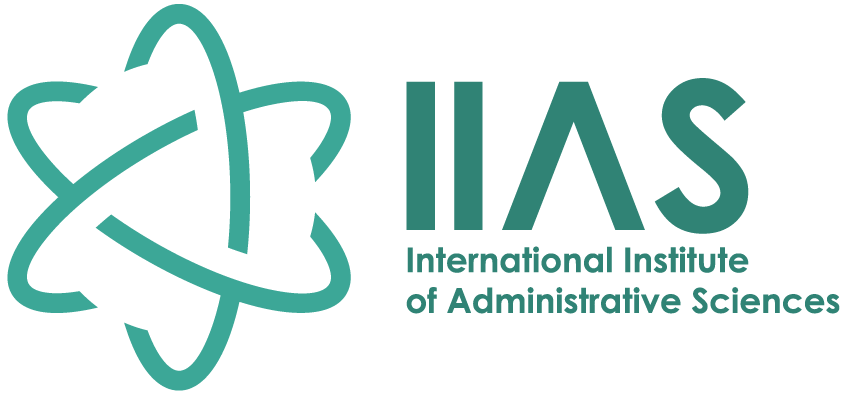
- 05 Jun 2025
In News:
India has secured the Presidency of the International Institute of Administrative Sciences (IIAS) for the term 2025–2028, marking a historic first for the country since becoming a member in 1998. The victory affirms India’s growing influence in the field of global public administration.
About IIAS
- Established: 1930
- Headquarters: Brussels, Belgium
- Nature: A global federation of 31 Member States, 20 National Sections, and 15 Academic Research Centres, dedicated to collaborative scientific research in public administration.
- Core Objectives:
- Promote collaboration on public governance solutions.
- Accredit academic and professional training programs in public management.
- Disseminate research and best practices in administrative sciences.
Although not formally affiliated with the United Nations, IIAS actively participates in UN mechanisms like the Committee of Experts on Public Administration (CEPA) and the UN Public Administration Network (UNPAN).
India’s Role and Election to Presidency
- India has been a Member State of IIAS since 1998, represented by the Department of Administrative Reforms and Public Grievances (DARPG).
- For the 2025–2028 term, Prime Minister Narendra Modi nominated V. Srinivas, Secretary, DARPG, as India's candidate in November 2024.
- Election Process:
- Hearings were held at Bharat Mandapam, New Delhi in February 2025.
- Four countries—India, South Africa, Austria, and Bahrain—submitted nominations.
- The final vote on June 3, 2025, saw India and Austria advance to the final round.
- Out of 141 votes, India secured 87 votes (61.7%), while Austria received 54 votes (38.3%).
Significance for India
- This marks India’s first Presidency of IIAS.
- The victory enhances India's position in global governance and showcases its administrative capabilities on an international platform.
- It also aligns with India’s focus on reforming and modernizing public administration through digital governance and institutional capacity-building.
Kichan and Menar Wetlands
- 05 Jun 2025
In News:
Recently, the Union Ministry of Environment announced that Kichan (Phalodi) and Menar (Udaipur) wetlands in Rajasthan have been recognized as Ramsar Sites, bringing India’s total to 91 Ramsar-designated wetlands—the highest in Asia.
About Menar Wetland:
- A freshwater monsoon wetland complex in Udaipur district, Rajasthan.
- Formed by three primary ponds: Braham Talab, Dhand Talab, and Kheroda Talab; the latter two are connected by flooded agricultural land during the monsoon.
- Habitat for endangered and migratory birds such as:
- Critically Endangered: White-rumped vulture (Gyps bengalensis), Long-billed vulture (Gyps indicus)
- Other species: Himalayan griffon, Egyptian vulture, Dalmatian pelican, Ferruginous pochard, Black-tailed godwit
- Home to over 70 plant species, including mango trees (Mangifera indica) that host colonies of Indian flying foxes (Pteropus giganteus).
- Community-led conservation: Menar village residents prevent poaching and fishing, earning it the title "Bird Village".
About Kichan Wetland:
- Located in Phalodi, Jodhpur, in the northern Thar Desert of Rajasthan.
- Comprises:
- Ratri Nadi (river)
- Vijaysagar Talab (pond)
- Riparian and scrub habitats
- Notable for supporting drought-resistant flora and over 150 bird species.
- Globally known for hosting over 22,000 migratory demoiselle cranes (Anthropoides virgo) each winter.
- A hub for birdwatchers, tourists, scientists, and students.
Ramsar Convention Overview:
- An intergovernmental treaty for the conservation of wetlands, signed in 1971 in Ramsar, Iran.
- Headquartered in Gland, Switzerland.
- Wetlands listed under the convention are known as Ramsar Sites—of international importance.
- Member countries (Contracting Parties) commit to identifying and protecting these wetlands.
World Wealth Report 2025
- 05 Jun 2025
In News:
The World Wealth Report 2025, released by the Capgemini Research Institute, highlights a significant surge in global and Indian high-net-worth individual (HNWI) wealth. The report covers 71 countries, representing over 98% of global Gross National Income (GNI) and 99% of world stock market capitalization.
India’s HNWI Landscape in 2024
- HNWI Wealth Growth: India witnessed an 8.8% increase in HNWI wealth in 2024.
- Total Millionaires: The country had 378,810 HNWIs by the end of 2024, with a cumulative wealth of $1.5 trillion.
- Millionaires Next Door: Among them, 333,340 individuals fell under the "Millionaires Next Door" category (investable assets between $1M–$5M), holding $628.93 billion in wealth.
- Ultra HNWIs: India was home to 4,290 Ultra-HNWIs (assets ≥ $30M), with combined assets worth $534.77 billion.
Global Trends in HNWI Wealth
- Global Growth: HNWI population worldwide rose by 2.6%, driven largely by a 6.2% rise in Ultra-HNWI numbers.
- Investment Trends: Alternative investments (private equity, cryptocurrencies) formed 15% of HNWI portfolios, signaling diversification beyond traditional assets.
- Top Contributors:
- United States added 562,000 millionaires, recording a 7.6% rise, reaching a total of 7.9 million HNWIs.
- The U.S. also holds 36% of centi-millionaires (net worth ≥ $100M) and 33% of the world's billionaires.
- India and Japan saw 5.6% growth, while China recorded a 1.0% decline in HNWI population.
Shifting Dynamics in Wealth Management
- A massive “great wealth transfer” is underway globally.
- 81% of global next-gen HNWIs and 85% of Indian next-gen HNWIs plan to switch wealth management (WM) firms within 1–2 years of inheritance.
- Key reasons include:
- Lack of preferred channel services (51%)
- Ineffective digital transaction tools (41%)
- Digital Transformation Need: The evolving expectations of next-gen clients are pushing firms toward AI-enabled advisory models and advanced digital infrastructure.
Offshore Wealth Allocation
- By 2030, 98% of Indian next-gen HNWIs plan to increase their offshore assets by over 10%.
- Motivations include:
- Superior investment options (55%)
- Better wealth management services (65%)
- Improved market connectivity (54%)
- Tax efficiency and political-economic stability (49%)
- Motivations include:
World Environment Day 2025
- 05 Jun 2025
In News:
Every year on June 5, people across the globe unite to celebrate World Environment Day, an initiative led by the United Nations Environment Programme (UNEP).
Key Highlights:
- Observed on: June 5 annually
- Initiated by: United Nations Environment Programme (UNEP)
- First celebrated: 1973 (following the 1972 Stockholm Conference on the Human Environment)
- Objective: Promote global awareness and action for environmental protection
Theme for 2025: "Beat Plastic Pollution"
- Focuses on the escalating crisis of plastic pollution and its adverse impact on ecosystems, wildlife, and human health.
- Highlights the need to transition away from single-use plastics, promote sustainable consumption, and adopt eco-friendly alternatives.
Key Statistics:
- Plastic production: Increased from 2 million tonnes (1950) to 430 million tonnes (2025)
- Marine pollution:19–23 million tonnes of plastic enter aquatic ecosystems annually
- Microplastics detected in oceans, mountains, and the human body
Host Country for 2025: Republic of Korea
- Chosen for its leadership in green innovation and sustainable practices.
- Initiatives include:
- Advanced waste segregation and recycling systems
- Bans on single-use plastics in major outlets
- Promotion of tech-driven eco-solutions
By hosting, South Korea aims to showcase scalable models for combating plastic pollution globally.
Historical Background
- Stockholm Conference 1972 laid the foundation for modern environmental governance.
- UNEP assigns a theme and host country annually to align global action.
- Over 150 countries now participate through:
- Clean-up drives
- Tree plantation campaigns
- Policy forums
- Environmental education programs
Significance
World Environment Day plays a vital role in:
- Raising awareness on climate change, pollution, deforestation, and sustainability
- Encouraging individual and community-level action
- Facilitating policy dialogue and regulatory reform
- Mobilizing youth leadership in environmental movements
UMEED Portal and Waqf (Amendment) Act, 2025
- 04 Jun 2025
In News:
The Government of India will launch the UMEED Portal to digitize and streamline the registration and management of Waqf properties under the Waqf (Amendment) Act, 2025.
What is the UMEED Portal?
- Full Form: Unified Waqf Management, Empowerment, Efficiency, and Development
- Purpose: A centralized digital platform to register, regulate, and monitor Waqf properties nationwide.
- Nodal Ministry: Ministry of Minority Affairs, in collaboration with State Waqf Boards and judicial authorities.
Objectives:
- Ensure transparent, efficient, and time-bound registration of Waqf assets.
- Digitally empower stakeholders with access to legal rights, obligations, and procedural information.
- Resolve long-pending disputes and enhance accountability in Waqf administration.
- Provide real-time data, including geo-tagged property mapping, to support policymaking.
Key Features:
- Time-Bound Registration:All Waqf properties must be registered within six months of the portal's launch.
- Geo-Tagging and Digital Mapping:Properties must be geo-tagged and include precise dimensions for registration.
- Dispute Resolution Mechanism:Properties not registered by the deadline will be automatically flagged as disputed and referred to Waqf Tribunals for adjudication.
- Legal Support Services:The portal offers awareness tools regarding the amended Act and clarifies legal entitlements.
- Women-Centric Provision:Properties solely in women’s names cannot be declared as Waqf. However, women, children, and the economically weaker sections (EWS) remain eligible beneficiaries.
About Waqf and Recent Legal Reforms:
- What is Waqf?
A Waqf is a permanent charitable endowment under Islamic law, where assets (usually land) are donated for religious or public welfare purposes. Such property is inalienable and cannot be sold, inherited, or transferred.
- Waqf (Amendment) Act, 2025:
- Digital Mandate: Mandatory online registration of all Waqf properties within 6 months.
- Judicial Oversight:Introduced provision for appealing Waqf Tribunal decisions in the High Court within 90 days.
- Tribunal Empowerment:Unregistered properties after the deadline will be treated as disputed and decided by Waqf Tribunals.
- Government Monitoring:Enhanced role of State Waqf Boards in ensuring compliance, registration, and dispute handling.
Significance:
- Aims to reduce litigation, encroachments, and opacity in Waqf land management.
- Bridges the gap between community welfare and digital governance.
- Strengthens institutional mechanisms for protecting religious endowments and improves access to justice.
Seva Se Seekhen Campaign
- 04 Jun 2025
In News:
The Government of India has launched the ‘Seva Se Seekhen’ (Learn by Doing) campaign to empower youth through hands-on experience at Jan AushadhiKendras (JAKs). Starting from June 1, 2025, this initiative aims to blend experiential learning with public health outreach.
About the Campaign:
- Launched in: 2025
- Nodal Ministries:
- Ministry of Youth Affairs and Sports
- Department of Pharmaceuticals, Ministry of Chemicals and Fertilizers
- Framework:Part of the National Youth Development Framework, aligning youth engagement with grassroots service.
Objectives:
- Provide experiential learning opportunities in real-world public service settings.
- Raise awareness about generic medicines and enhance health literacy.
- Equip youth with technical and soft skills in areas such as inventory, logistics, customer service, and communication.
- Foster values such as discipline, empathy, and civic responsibility among the youth.
Key Features:
- Nationwide Implementation:
- Five youth volunteers per district will be placed across five Jan AushadhiKendras.
- Covers all states and Union Territories.
- Volunteer Sources:Participants are selected from:
- MY Bharat
- National Service Scheme (NSS)
- Pharmacy colleges
- Other youth-focused platforms
- Duration:15-day structured engagement, including guided tasks and learning outcomes.
Roles and Responsibilities of Volunteers:
- Support daily functioning and customer services at JAKs.
- Assist in medicine inventory and logistics management.
- Promote generic medicine awareness among the public.
- Participate in community health outreach activities.
- Observe backend processes like supply chains and stock maintenance.
Key Benefits for Youth:
- Practical exposure to pharmacy operations and public health service.
- Skills in record-keeping, inventory handling, and basic operations.
- Development of employability and customer interaction skills.
- Insights into affordable healthcare delivery under schemes like Pradhan Mantri Bhartiya JanaushadhiPariyojana (PMBJP).
Operation Spider’s Web
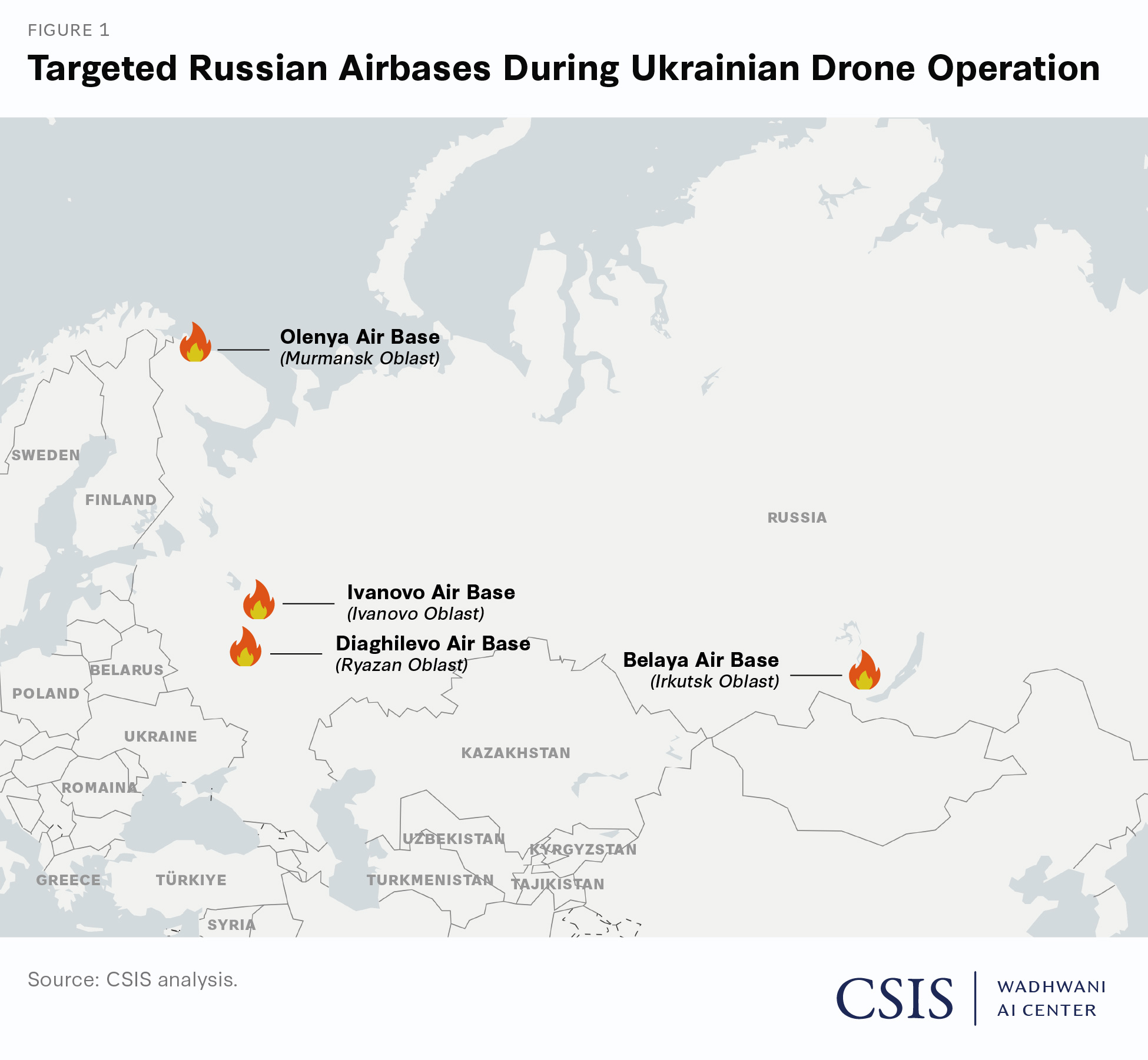
- 04 Jun 2025
In News:
On June 1, 2025, Ukraine executed Operation Spider’s Web, its most extensive drone-based military strike against Russia to date. The attack destroyed an estimated $7 billion worth of Russian aircraft, including approximately 34% of Russia’s strategic bomber fleet. The operation occurred just before the second round of peace talks between the two countries in Istanbul.
Key Highlights:
- Nature of Operation:A high-precision, long-range drone strike aimed at crippling Russia’s strategic air power, especially bombers capable of launching cruise missiles and nuclear warheads.
- Planning and Execution:
- Orchestrated over 18 months by the Security Service of Ukraine (SBU).
- 117 explosive-laden drones were deployed simultaneously.
- Drones were concealed in wooden sheds on civilian trucks, enabling stealth transport across vast distances.
- Once positioned, they were remotely launched, surprising Russian air defences.
- Airbases Targeted:The operation struck five major Russian airbases:
- Belaya (Irkutsk)
- Dyagilevo (Ryazan)
- Ivanovo Severny
- Olenya (Murmansk)
- Ukrainka
- Geographic Reach:Some drone targets were over 4,300 km from the front lines, marking the deepest Ukrainian strike inside Russian territory.
Strategic and Political Context:
- The drone strike came hours after Russia's Iskander-M missile attack on a Ukrainian military training centre in Dnipropetrovsk, which killed 12 soldiers and injured over 60.
- Ukrainian Major General MykhailoDrapatyi resigned, accepting personal responsibility for the missile casualties.
- Ukrainian President Volodymyr Zelenskyy hailed Operation Spider’s Web as a “brilliant success,” showcasing Ukraine’s evolving tactical capabilities.
- The operation served to strengthen Ukraine’s negotiating position ahead of the June 2 Istanbul peace talks.
Peace Negotiation Backdrop:
- The Istanbul talks followed an earlier round that resulted in the largest prisoner exchange since the start of the war but lacked a concrete ceasefire plan.
- Ukraine is expected to propose:
- A 30-day ceasefire
- Mutual prisoner release
- A high-level summit between Presidents Zelenskyy and Putin
- However, Russia has reportedly rejected all ceasefire proposals and has not submitted a formal response.
Wider Conflict Situation:
- As of late May 2025, Ukraine has lost around 18% of its territory to Russian control.
- Meanwhile, Russian forces continue their advance, recently capturing a village in Ukraine’s northern Sumy region.
Caspian Gull (Laruscachinnans)
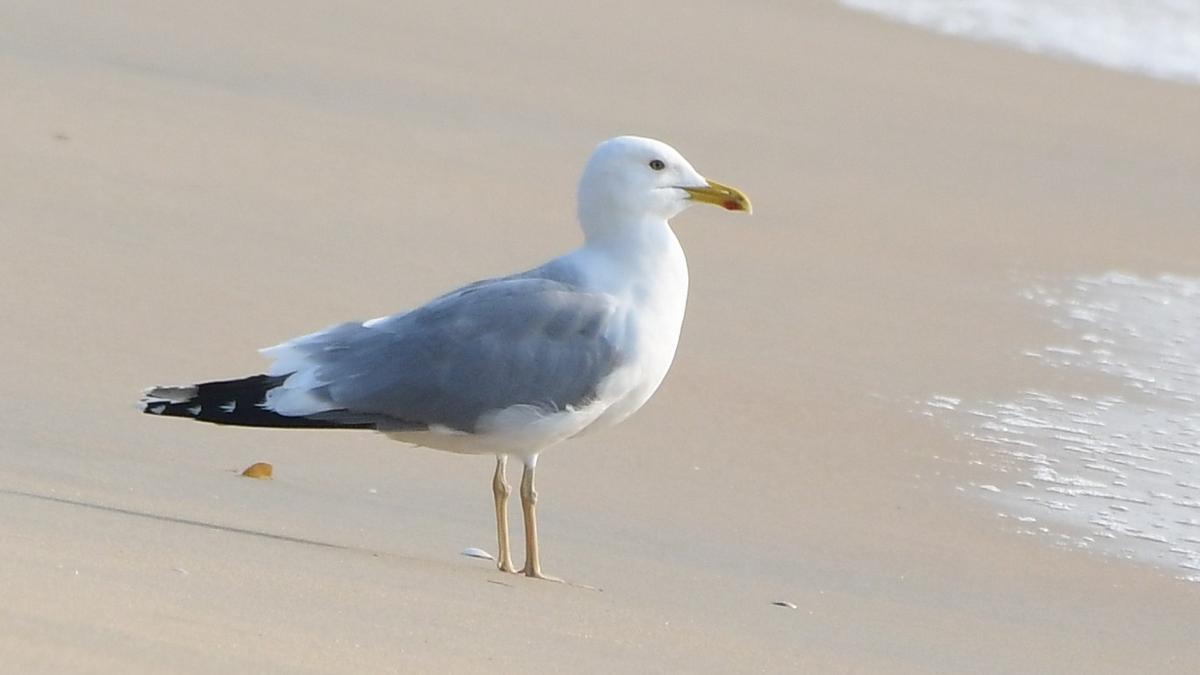
- 04 Jun 2025
In News:
In a significant ornithological development, the Caspian Gull, one of the rarest gull species to be recorded in India, was positively identified five years after being sighted at Kappad Beach, Kozhikode, Kerala. This marks the first confirmed sighting of the species in Kerala, and only the second in southern India.
Discovery and Identification:
- Ornithologist Abdulla Paleri first spotted the bird in February 2020 but took five years to confirm its identity due to its close resemblance to the more commonly seen Steppe Gull.
- The Caspian Gull differs subtly in features such as head and beak shape, posture, wing pattern, and leg morphology.
- Images were shared with international experts and on the eBird platform, where ornithologists Oscar Campbell and Hans Larsson confirmed the identification. The sighting has remained unchallenged since.
About Caspian Gull (Laruscachinnans):
- A monotypic, large, white-headed gull species, considered rare in India.
- Regularly breeds in Central Asia, particularly in steppe and semi-desert habitats with lakes, rivers, and reservoirs.
- Nesting usually occurs on flat, low-lying areas near water bodies, often surrounded by reedbeds.
- The species feeds on fish, insects, molluscs, and other invertebrates.
Migration Pattern:
- It migrates from the Black Sea and Caspian Sea region to southern and eastern Kazakhstan, western China, and parts of South Asia during winter.
- Traditionally winters in the eastern Mediterranean, Persian Gulf, and western India (like Gujarat).
- Increasingly, small populations are dispersing into Europe, including Sweden, Norway, and Denmark.
- The Kozhikode gull is believed to be a straggler—a bird that deviates from its usual migratory route.
Conservation Status:
- IUCN Red List:Least Concern, Despite its rarity in India, the species is not globally threatened.
BharatGen

- 04 Jun 2025
In News:
Union Minister Dr. Jitendra Singh launched BharatGen, India’s first indigenously developed, government-funded Multimodal Large Language Model (LLM) at the BharatGen Summit 2025, marking a significant step in India’s AI innovation landscape.
About BharatGen:
- BharatGen is a Multimodal LLM designed to support 22 Indian languages and various content formats—text, speech, and image.
- Developed under the National Mission on Interdisciplinary Cyber-Physical Systems (NM-ICPS) and implemented by the TIH Foundation for IoT and IoE at IIT Bombay.
- Supported by the Department of Science and Technology (DST), it is a collaborative effort involving premier academic institutions, researchers, and innovators.
Key Features:
- Multilingual and multimodal capabilities (text, voice, image inputs).
- Open-source platform to encourage accessible innovation.
- Trained on Indian datasets to reflect Indian linguistic and cultural diversity.
- Integrated applications across critical sectors like healthcare, education, governance, and agriculture.
- Aims to deliver region-specific AI solutions rooted in Indian values and societal contexts.
Implementation Mechanism:
- Executed through 25 Technology Innovation Hubs (TIHs) across India.
- Four of these TIHs have been upgraded to Technology Translational Research Parks (TTRPs) for real-world deployment.
- Guided by four pillars: technology development, entrepreneurship, human resource development, and international collaboration.
First-Person View (FPV) Drones
- 03 Jun 2025
In News:
Recently, Ukraine conducted a major drone strike on Russia, reportedly destroying over 40 aircraft using First-Person View (FPV) drones—marking one of the deepest strikes into Russian territory since the start of the conflict in 2022. This highlights the growing role of FPV drones in modern asymmetric warfare.
What are FPV Drones?
First-Person View (FPV) drones are unmanned aerial vehicles (UAVs) that allow remote pilots to view the drone’s surroundings through a camera mounted on the drone. The live feed can be transmitted to:
- Specialized goggles
- Smartphones
- Other display screens
This immersive view enables highly precise navigation and control.
Key Features and Technologies
- GPS-Independent Navigation: Operates effectively even when GPS signals are jammed or unavailable.
- SmartPilot System: Uses visual-inertial navigation by interpreting camera data to assess the drone's position and orientation.
- LiDAR Integration: Enhances terrain mapping and obstacle detection in complex environments.
- Low Cost: A functional FPV drone can cost as little as $500, making them highly affordable compared to traditional weapon systems.
Operational Use in Combat
- Reconnaissance First: Typically, a long-range reconnaissance drone is used to identify the target area before deploying FPV drones for strikes.
- Deep Strike Capability: Despite having a short range (a few kilometres), FPV drones offer stealth and precision to strike deeply into enemy territory.
- Combat Strategy: Their agility and affordability make FPV drones a key component of attrition warfare, especially for resource-constrained nations.
Advantages in Warfare
- Cost-effectiveness: Offers high-impact capability at a fraction of the cost of conventional weapons.
- Reduced Human Risk: Limits the need for manned missions in hostile territory.
- Stealth: Smaller size and low acoustic footprint make them harder to detect and intercept.
- High Destructiveness: Able to carry payloads such as explosives, effectively targeting tanks, aircraft, and installations.
Challenges and Limitations
- Limited Range: Operates within a few kilometres, requiring deployment close to target zones.
- Reduced Situational Awareness: Pilots rely solely on camera feed, which may not provide full spatial context.
- Need for Visual Observers: In complex environments, an additional observer may be needed to guide the operator safely.
Ukraine’s Use of FPV Drones
Ukraine has effectively integrated FPV drones into its military strategy:
- In November 2023, FPVs were credited as a low-cost, high-impact method of resisting Russian advances.
- NATO sources indicated that over two-thirds of Russian tanks destroyed recently were hit by FPV drones.
- Ukrainian drone manufacturer Vyriy Drone delivered 1,000 indigenous FPVs in March 2025.
- Ukraine is projected to produce over 4 million drones in 2025, reflecting a significant scaling of domestic capabilities.
Geopolitical and Strategic Implications
- Technological Self-Reliance: Domestic production protects nations from geopolitical supply chain disruptions (e.g., China’s chip exports).
- Global Proliferation: Countries like Israel and Iran have also developed drone systems, including HAROP and Shahed drones respectively.
Jharkhand’s First Tiger Safari
- 03 Jun 2025
In News:
The Jharkhand government has proposed setting up its first-ever tiger safari in the fringe area of the Palamau Tiger Reserve (PTR), located in Latehar district. This initiative aims to promote wildlife education, conservation awareness, and eco-tourism, while also creating employment opportunities.
What is a Tiger Safari?
A tiger safari refers to a tourism model where rescued, conflict-prone, or orphaned tigers are housed in naturalistic enclosures, ensuring sightings for visitors. It differs from traditional wild safaris, where sightings are not guaranteed. The concept was first proposed in the NTCA's 2012 tourism guidelines, refined in 2016, and later aligned with the Supreme Court’s 2024 directive, which mandates that such safaris be located outside core and buffer zones of tiger reserves.
Legal and Regulatory Framework
- Governed by:
- Wildlife (Protection) Act, 1972
- National Tiger Conservation Authority (NTCA) Guidelines (2012, 2016)
- Central Zoo Authority (CZA) for animal welfare, enclosure design, and project compliance
- Supreme Court Ruling (March 2024):
- Tiger safaris must not be located inside core or buffer zones.
- Intended to protect natural habitats and uphold conservation goals.
About Palamau Tiger Reserve (PTR)
- Established: 1974 under Project Tiger
- Location: Chhotanagpur Plateau, Jharkhand
- Rivers: North Koel, Burha (perennial), Auranga
- Vegetation: Northern Tropical Dry Deciduous forest (Sal-dominated)
- Key Fauna: Bengal Tiger, Asiatic Elephant, Sloth Bear, Leopard, Indian Pangolin, Otter
- Historical Note: Site of the world’s first pugmark-based tiger census (1932)
Project Details
- Location: Barwadih Western Forest Range (fringe of PTR, outside core/buffer zones)
- Size: Approx. 150 hectares
- Animals Housed: Only rescued, conflict-prone, or orphaned tigers from reserves/zoos (not wild or zoo-bred tigers unless approved)
- Objectives:
- Promote tourism and conservation education
- Create an experiential learning space for visitors
- Generate employment (~200 local jobs)
The Central Zoo Authority (CZA) will assess the site and species selection. Post Forest Department clearance, the Detailed Project Report (DPR) will be submitted to NTCA and CZA. Approvals may take 5–6 months, followed by a construction period of ~18 months.
Concerns and Challenges
- Tribal and Community Rights:Activists caution that such projects may marginalize forest-dwelling communities and restrict access to traditional forest-based livelihoods (grazing, NTFP collection).
- Consent of Local Communities:As per the Forest Rights Act, projects on forest land must involve Gram Sabha consultation. Activists argue this has yet to be fully addressed.
- State's Clarification:Officials maintain that the site lies on forest land under state management, with no expected displacement.
RBI’s Draft Guidelines on Gold Loans
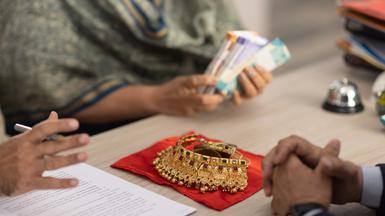
- 03 Jun 2025
Why is the RBI proposing changes to gold loan regulations?
In April 2024, the Reserve Bank of India (RBI) released draft guidelines on loans against gold to harmonise regulations across banks and NBFCs and to address irregularities. The move follows an extraordinary surge in gold-backed loans during FY24:
- Gold loan portfolios grew over 50% across banks and NBFCs.
- For banks, the portfolio more than doubled (104% growth).
This rapid growth, amid rising gold prices and lax lending standards, raised regulatory concerns.
What are the key proposals in the draft guidelines?
- LTV Norms:
- The Loan-to-Value (LTV) ratio remains capped at 75%.
- For bullet repayment loans for consumption, accrued interest must be included in the LTV calculation, effectively lowering the loan amount disbursed.
- Ownership Proof:Borrowers must furnish proof of ownership for the gold pledged.
- Valuation Standards:
- Gold should be valued based on 22-carat price.
- Uniform procedures must be followed to assess the purity and weight.
- Loan Renewal & Fresh Sanctions:
- Renewals or top-ups are permitted only if:
- The existing loan is standard, and
- It complies with the LTV limit.
- Concurrent loans for both consumption and income-generation are disallowed.
- A fresh loan can only be granted after full repayment (principal + interest) of the previous loan.
- Renewals or top-ups are permitted only if:
- Collateral Return Timeline:If the gold is not returned within 7 working days after repayment, the lender must compensate the borrower at ?5,000/day for each day of delay.
Likely Impact on Borrowers and Lenders
Borrowers:
- May face reduced loan amounts and higher documentation requirements.
- Small and rural borrowers, dependent on gold loans for agriculture and allied sectors, may experience reduced accessibility.
NBFCs and Banks:
- NBFCs that frequently renew or top-up gold loans could lose flexibility.
- Compliance costs will rise due to stringent documentation, valuation, and reporting norms.
- Smaller NBFCs relying on re-pledging of gold may face liquidity issues.
- Interest rates may rise to offset higher operational expenses.
Is a uniform policy suitable?
A one-size-fits-all policy may not be practical. Gold loans are a lifeline for rural households with limited access to formal credit. Experts suggest:
- Differentiated norms for micro gold loans (small-ticket loans) and high-value loans.
- Consideration for the informal nature of ownership in many rural households.
Krishi Nivesh Portal
- 03 Jun 2025
In News:
In an effort to streamline and accelerate investments in India’s agriculture and allied sectors, the Government of India has launched the Krishi Nivesh Portal, developed by the Ministry of Agriculture & Farmers Welfare.
The initiative aligns with the government’s broader goal of promoting the ease of doing business in agriculture by integrating schemes from multiple Central ministries and State governments into a single digital platform.
Key Features of the Portal
- One-Stop Solution: The portal acts as a centralized hub providing real-time access to information on agricultural schemes from various government departments and ministries.
- Multi-Stakeholder Access: It is designed to cater to farmers, entrepreneurs, Farmer Producer Organizations (FPOs), industries, and agri-startups.
- Scheme Integration: As of now, the portal integrates 17 flagship schemes spanning seven Union Ministries, including:
- Agriculture Infrastructure Fund
- Animal Husbandry Infrastructure Development Fund
- PM KisanSampada Yojana
- PM-KUSUM
- Technological Features: It offers a user-friendly interface, chatbot support, and interactive dashboards for data-driven insights and monitoring.
- Investment Tracking: Users can track application status, explore investment opportunities based on geographical spread, and gain assistance with loan disbursal.
Institutional Integration
- Currently, 14 Union ministries/departments and 9 state government departments are involved in implementing schemes related to agriculture and allied sectors.
- Ministries already integrated include:
- Ministry of Agriculture
- Ministry of Food Processing Industries
- Ministry of Rural Development
- Ministry of Jal Shakti
- Ministry of New and Renewable Energy
- Ministry of Fertilisers
Efforts are underway to onboard over 300 schemes from various ministries and states, including those related to credit-linked initiatives, PPP models, venture capital projects, and startups.
Significance for Agricultural Sector
- The portal addresses key challenges such as fragmented scheme information, siloed departmental operations, and delays in loan processing.
- It aims to unlock the investment potential of India’s agri-sector, especially for private investors, by offering a consolidated, transparent, and accessible interface.
- According to official estimates:
- The revised budget allocation for FY 2024–25 for agricultural investment schemes stands at ?1.31 lakh crore.
- In FY 2021–22, private sector investment in agriculture amounted to ?2.79 lakh crore.
Sabine’s Gull Spotted at Nalsarovar
- 03 Jun 2025
In News:
In a remarkable ornithological event, the Sabine’s Gull — a rare Arctic seabird — has been observed at Nalsarovar Bird Sanctuary in Gujarat. This marks the species’ first recorded appearance in India since 2013, when it was last sighted in Kerala, underlining the dynamic migratory patterns affecting India’s wetland ecosystems.
About Nalsarovar Bird Sanctuary
- Located nearly 64 km west of Ahmedabad, Nalsarovar Bird Sanctuary is one of Gujarat’s most prominent wetland ecosystems. Encompassing an area of 120.82 sq km, it comprises a shallow, seasonal lake interspersed with around 360 islets, creating a rich mosaic of aquatic habitats.
- This natural lake traces its origin to the 15th century, following the construction of a check dam on the Sabarmati River. Initially designed to serve irrigation and drinking water needs of nearby villages, the lake gradually evolved into a crucial habitat for avifauna. Recognition of its ecological significance grew over time, prompting colonial authorities in the early 20th century to take protective measures.
- Eventually, in 1969, the Government of Gujarat declared Nalsarovar a bird sanctuary, and it was further accorded the status of a Ramsar wetland site in 2012, signifying its global importance under the Ramsar Convention.
- Flora: The sanctuary supports a wide variety of aquatic and wetland plant life, with 48 algae species and 72 flowering plant species recorded. Common plant species include Cyperus, Scirpus, Typha ungustata, Eleocharis palustris, Ruppia, Potamogeton, Vallisneria, Naias, and Chara.
- Fauna:Nalsarovar is home to nearly 250 bird species, making it a haven for bird watchers. Regular sightings include both greater and lesser flamingos, pelicans, ducks, geese, coots, rails, cranes, and a variety of wading and aquatic birds like herons, egrets, storks, spoonbills, and sarus cranes.
- Beyond birds, the sanctuary also supports mammalian fauna. On its southern and southwestern peripheries, species such as the Indian wild ass, mongoose, jungle cat, Indian fox, jackal, wolf, and striped hyena are found.
Sabine’s Gull: Profile
- The Sabine’s Gull (Xemasabini), also known as the fork-tailed gull or xeme, is a small gull species notable for its elegant flight and distinctive wing markings. Adults can be recognized by their pale grey backs, black wingtips, white secondary feathers, and forked white tails.
- This gull breeds in high Arctic and subarctic zones across North America, Russia, Greenland, and Svalbard, and is a rare migrant in South Asia.
- According to the IUCN Red List, it is currently categorized as a species of Least Concern, although sightings in India are extremely uncommon.
ULLAS – Nav Bharat SaakshartaKaryakram and Goa’s Milestone in Literacy
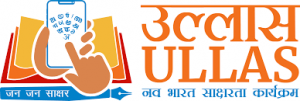
- 02 Jun 2025
In News:
Recently, Goa became the second state in India to achieve full functional literacy under the ULLAS – Nav Bharat SaakshartaKaryakram (New India Literacy Programme), marking a key achievement in India’s goal of attaining full literacy by 2030, as envisioned in the National Education Policy (NEP) 2020.
About ULLAS
- ULLAS stands for Understanding Lifelong Learning for All in Society.
- It is a centrally sponsored scheme implemented by the Ministry of Education from 2022 to 2027.
- Target Group: Adults aged 15 years and above who missed formal schooling.
- Alignment: The scheme is aligned with NEP 2020, emphasizing inclusive and equitable education.
- Implementation Basis: The programme is built on the spirit of volunteerism and Kartavya Bodh (sense of duty).
Five Components of the ULLAS Scheme:
- Foundational Literacy and Numeracy
- Critical Life Skills
- Basic Education
- Vocational Skills Development
- Continuing Education
Digital Outreach
- The ULLAS mobile app facilitates registration of learners and volunteers.
- It also provides access to learning resources through the DIKSHA portal of NCERT.
- So far, over 2.40 crore learners and 41 lakh volunteer teachers have been registered on the app.
- Over 1.77 crore learners have taken the Foundational Literacy and Numeracy Assessment Test (FLNAT).
Goa Achieves Full Literacy
- Declared Fully Literate: On May 30, 2025, during the 39th Goa Statehood Day celebrations at Panaji, Goa was declared fully literate.
- Reported Literacy Rate: As per PLFS 2023–24, Goa had a literacy rate of 93.60%, among the highest in India.
- State Survey Update: A state-led survey confirmed that Goa had crossed the 95% benchmark, qualifying it as fully literate under ULLAS.
Key Factors Behind Goa’s Success
- Adopted a Whole-of-Government approach, involving departments such as:
- Directorate of Panchayats
- Municipal Administration
- Social Welfare
- Planning & Statistics
- Women & Child Development
- Engaged SwayampurnaMitras for grassroots awareness and learning support.
- Played an active role in certification and inclusion of learners into the literacy programme.
- Strong collaboration between SCERT, local administration, school heads, volunteers, and field workers ensured last-mile delivery.
Significance for India
- Goa's achievement underscores the effectiveness of decentralized, people-driven literacy campaigns.
- Demonstrates the potential of tech-enabled platforms, volunteerism, and inter-departmental coordination.
- Sets a model for other states in achieving India’s literacy goal by 2030.
- Reinforces the broader national vision of “Jan-Jan Saakshar” and a Viksit Bharat.
Kawal Tiger Reserve and KumramBheem Conservation Reserve
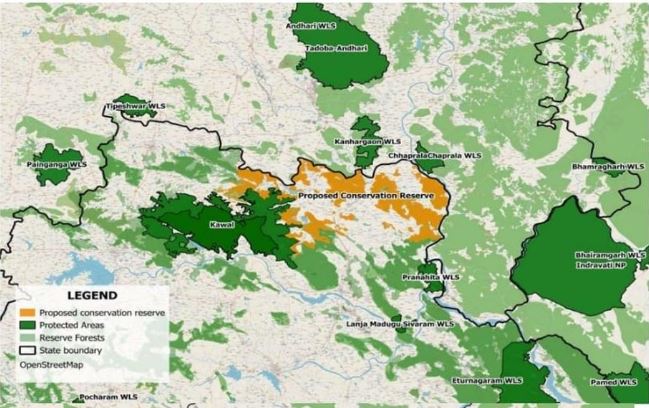
- 02 Jun 2025
In News:
In a recent development, the Telangana government has designated the tiger corridor connecting the Kawal Tiger Reserve (Telangana) with the Tadoba-Andhari Tiger Reserve (Maharashtra) as the KumramBheem Conservation Reserve, under Section 36(A) of the Wildlife Protection Act, 1972. This move is aimed at preserving critical wildlife corridors in the Central Indian Landscape.
Kawal Tiger Reserve:
- Location: Situated in Telangana, along the Godavari River, forming part of the Deccan Peninsula – Central Highlands.
- Biogeographic Zone: Lies at the southern tip of the Central Indian Tiger Landscape.
- Connectivity: Links with Tadoba-Andhari (Maharashtra), Indravati (Chhattisgarh), and other reserves like Tipeshwar, Chaprala, and Kanhargaon.
- Vegetation Type: Southern Tropical Dry Deciduous Forests.
- Flora: Dominated by teak, bamboo, and species like Anogeissuslatifolia, Terminalia arjuna, Boswellia serrata, etc.
- Fauna: Hosts tiger, leopard, nilgai, chinkara, sambar, blackbuck, wild dog, wolf, and jungle cat.
KumramBheem Conservation Reserve: Newly Notified Area
- Legal Basis: Declared under Section 36(A), Wildlife Protection Act, 1972, which allows states to notify government-owned land adjacent to or connecting protected areas as conservation reserves.
- Total Area: 1,492.88 sq km (149,288.48 hectares)
- District &Mandals Covered: Spread across KumramBheemAsifabad district, covering parts of Kerameri, Wankidi, Asifabad, Sirpur, Koutala, Bejjur, Kagaznagar, Rebbana, Dahegaon, and Tiryanimandals.
- Forest Blocks Included: 78 blocks including Garlapet, Ada, Manikgarh East & West, Danora, Gudem, Bejjur, Kadamba, and Girali.
Ecological Significance
- Tiger Movement: Over the last decade, more than 45 unique tigers (mostly transient) have been documented in this corridor through camera trapping and surveys.
- Breeding Evidence: Since 2015, 17 tiger cubs born from 3 tigresses have been recorded. The 2022 Tiger Census confirmed 4 adult tigers and 3 cubs in the area.
- Leopard Presence: 8 leopards were recorded during the All India Leopard Estimation, 2022.
- Other Carnivores: Includes sloth bear, hyena, wild dog, wolf, honey badger, and jungle cat.
- Herbivore Diversity: Rich prey base such as gaur, sambar, nilgai, chital, muntjac, four-horned antelope, and Indian gazelle.
- Avifauna: Home to 240+ bird species, including rare species like the Malabar Pied Hornbill and Long-billed Vulture, the latter using the reserve as a nesting site.
- Elephant Movement: Occasional elephant presence has also been reported.
Governance
A Conservation Reserve Management Committee has been established. Members include:
- District Forest Officer (DFO) of KumramBheemAsifabad (Convenor)
- Sarpanches of local panchayats (e.g., Karji, Motlaguda, Murliguda)
- Representatives from NGOs like Hyderabad Tiger Conservation Society, WWF-India, and Wildlife Conservation Trust
- Officials from Veterinary, Agriculture, and Forest Divisions
Ghatampur Thermal Power Project
- 02 Jun 2025
In News:
Prime Minister Narendra Modi recently dedicated Unit-1 (660 MW) of the Ghatampur Thermal Power Project, located in Kanpur Nagar, Uttar Pradesh, marking a major step forward in India’s thermal power capacity and energy security goals.
Project Overview
- Location: Ghatampur, Kanpur Nagar District, Uttar Pradesh
- Implementing Agency: Neyveli Uttar Pradesh Power Ltd (NUPPL) — a joint venture between
- NLC India Ltd (51% share)
- Uttar Pradesh Rajya Vidyut Utpadan Nigam Ltd (UPRVUNL) (49% share)
- Total Capacity: 3 units × 660 MW = 1,980 MW
- Project Cost: ?21,780.94 crore
Commissioning Timeline
- Unit-1 (660 MW): Commissioned in December 2024, dedicated in May 2025
- Remaining Units: Expected to be operational by December 2025
Power Distribution Agreement
- Uttar Pradesh: Receives 75.12% (1,487.28 MW) of the total power
- Assam: Allocated 24.88% (492.72 MW), subject to transfer of 20% equity from UPRVUNL to Assam Government
Technological and Environmental Features
- Efficient Supercritical Technology:Utilizes supercritical boilers with 88.81% efficiency, reducing fuel usage and emissions.
- Zero Liquid Discharge (ZLD):Ensures no industrial wastewater release, protecting surrounding land and water bodies.
- Air Pollution Control:Equipped with modern pollution mitigation systems:
- Selective Catalytic Reduction (SCR) – Controls NOx emissions
- Flue Gas Desulphurization (FGD) – Reduces SOx emissions
- Continuous Emission Monitoring System (CEMS) and Ambient Air Quality Monitoring Stations (AAQMS) – Ensure real-time pollution tracking
- Water Conservation Measures:
- 288 km of canal lining saves approx. 195 million litres/day
- Raw water storage capacity of 46 lakh cubic meters
Fuel Security
- The plant sources coal from its own captive mine, producing 9 million tonnes annually.
- It maintains a 30-day coal stockpile, equivalent to 10.165 lakh tonnes, ensuring uninterrupted operation.
IndiaAI Mission

- 02 Jun 2025
In News:
India has taken a major step toward self-reliance in Artificial Intelligence with the expansion of its national AI compute infrastructure and the selection of three new startups to build indigenous foundation models under the IndiaAI Mission.
Key Highlights
- Compute Infrastructure Boost:India’s total GPU capacity has now surpassed 34,000 units, up from the initial 10,000-target. A fresh addition of 15,916 GPUs to the existing 18,417 empanelled GPUs brings the total to 34,333 GPUs, now available through the IndiaAI Compute Portal (operational since March 2025).
- Subsidised Access:These GPUs are made available at a subsidised rate of ?67/hour, well below the global average of ?115/hour. This has been made possible through private sector empanelment instead of government-built data centres. Service providers receive up to 40% capital subsidy, enabling rapid infrastructure rollout.
- Empanelled Providers:Seven private companies were empanelled for compute provisioning:
- Cyfuture India Pvt. Ltd.
- Ishan Infotech Ltd.
- Locuz Enterprise Solutions Ltd.
- Netmagic IT Services Pvt. Ltd.
- Sify Digital Services Ltd.
- Vensysco Technologies Ltd.
- Yotta Data Services Pvt. Ltd.
Foundation Model Development
Under the IndiaAI Foundation Model initiative, three new startups have joined Sarvam AI (selected earlier in April 2025) to build India-specific Large Language Models (LLMs):
- Soket AI: Will develop a 120-billion parameter open-source model focused on Indian languages and use cases in defence, healthcare, and education.
- Gnani AI: Building a 14-billion parameter Voice AI model for real-time, multilingual speech recognition and reasoning.
- Gan AI: Developing a 70-billion parameter multilingual TTS (text-to-speech) model aiming for "superhuman" capabilities surpassing global benchmarks.
- Sarvam AI: Previously selected to create a 120-billion parameter Sovereign AI model, following the release of Sarvam-1 (2B parameters) and Sarvam-M (24B parameters).
These foundation models will be trained on Indian datasets and tailored for governance, public service delivery, and regional language support.
AI Kosh& Innovation Initiatives
- AI Kosh: A public dataset platform with 367 datasets uploaded, enabling research and model training using India-relevant data.
- IndiaAI I4C CyberGuard Hackathon: In collaboration with the Ministry of Home Affairs, AI models were developed for identifying cybercrime patterns from complex inputs like handwritten FIRs and audio calls on the National Cyber Crime Reporting Portal.
- Startup Innovation & Skill Development: Funding support, AI labs in Tier-II cities, and talent development programs are part of a broader push to promote innovation and reverse brain drain.
About IndiaAI Mission
- Launched by: Ministry of Electronics & Information Technology (MeitY)
- Cabinet Approval: March 2024 with a budget of over ?10,000 crore
- Objectives:
- Develop indigenous AI capabilities and infrastructure
- Democratize AI access for governance, startups, and citizens
- Promote ethical and safe AI use
- Position India among the global AI leaders
India Develops its first indigenous Mechanical Thrombectomy Device for Stroke Treatment
- 02 Jun 2025
In News:
In a significant milestone for India’s medical technology sector, the Technology Development Board (TDB) under the Department of Science and Technology (DST) has extended support for the development of the country’s first indigenously manufactured mechanical thrombectomy device for the treatment of acute ischemic stroke.
What is a Mechanical Thrombectomy Device?
The device is a minimally invasive medical tool designed to treat acute ischemic stroke, which occurs due to a blockage in a large blood vessel in the brain. Unlike conventional thrombolytic drugs that dissolve clots chemically, this device physically extracts the clot, thereby restoring blood flow swiftly and reducing the risk of severe brain damage or paralysis.
Development and Manufacturing
This pathbreaking innovation was developed by S3V Vascular Technologies Ltd, based in Mysuru, with financial backing from the TDB. The manufacturing takes place at an advanced, high-precision production facility within the Medical Devices Park in Oragadam, Tamil Nadu.
Key Features and Technological Highlights
- Indigenous Design: S3V is the first Indian company to conceptualize and produce stroke-intervention tools such as microcatheters, aspiration catheters, guidewires, and stent retrievers.
- R&D and Patents: The company has filed multiple patents, particularly for innovations in clot retriever head design and advanced catheter structures.
- Training and Capacity Building: A simulator-based training program has been initiated to train young medical professionals, with a focus on outreach in Tier-II cities.
- Global Compliance: The device aims to meet CE and USFDA standards, paving the way for international exports and aligning with global quality benchmarks.
Significance for India
- Reduces Import Dependency: The device addresses India’s reliance on expensive, imported stroke-care equipment.
- Cost-Effective Healthcare: By making stroke treatment more affordable, it enhances access to quality care for economically weaker sections.
- Supports Public Health Initiatives: It is expected to be integrated into government schemes like Ayushman Bharat, strengthening the country’s universal healthcare mission.
- Boosts MedTech Ecosystem: This innovation is a major stride in positioning India as a global player in the high-end medical devices sector.
DHRUVA(Digital Hub for Reference and Unique Virtual Address)
- 01 Jun 2025
In News:
In May 2025, the Department of Posts, under the Ministry of Communications, released the policy framework for DHRUVA (Digital Hub for Reference and Unique Virtual Address) — a key initiative aimed at creating a standardized, geo-coded digital address infrastructure across India.
What is DHRUVA?
DHRUVA is a Digital Public Infrastructure (DPI) initiative that conceptualizes Address-as-a-Service (AaaS) — a secure, consent-based, and interoperable system for managing and sharing address data. It builds upon the earlier DIGIPIN (Digital Postal Index Number) system, which created a national-level, geo-tagged addressing grid for improved governance and service delivery.
Objectives of DHRUVA
- Transform address information into a digital public good.
- Enable secure, standardized, and interoperable access to address data across sectors.
- Empower users with control and consent over how their address data is shared.
- Promote public-private collaboration in areas like logistics, e-governance, and financial inclusion.
Key Features
- DIGIPIN Backbone: Utilizes the Digital Postal Index Number system, allowing logical and directional naming of addresses with precise geolocation.
- Address-as-a-Service (AaaS): Facilitates seamless address validation, authentication, and sharing across government and private platforms.
- User Autonomy: Individuals can manage and consent to how their address data is used, ensuring privacy and user-centric governance.
- Open & Inclusive Access: The infrastructure is freely accessible, promoting innovation and broad-based adoption.
- Consent Framework: Address data sharing will be user-approved, ensuring a secure and trusted digital ecosystem.
Significance of DHRUVA
- Geospatial Governance: Enhances planning, disaster management, and delivery of public services through precise address mapping.
- Improved Logistics & E-Commerce: Enables more efficient last-mile delivery, reducing ambiguity in address identification.
- Financial Inclusion: Facilitates smoother KYC, subsidy disbursement, and service access in rural and underserved areas.
- Ease of Living & Digital India: Aligns with broader national goals by supporting smart governance and digital transformation.
- Public-Private Synergy: Encourages co-creation of solutions by government bodies and private enterprises based on shared, trusted digital address data.
India’s Provisional GDP Estimates for FY 2024–25
- 01 Jun 2025
In News:
The Ministry of Statistics and Programme Implementation (MoSPI) released the Provisional Estimates (PEs) of India’s Gross Domestic Product (GDP) and Gross Value Added (GVA) for the financial year 2024–25 (FY25), providing a comprehensive picture of the country's economic performance.
Understanding GDP and GVA
- GDP (Gross Domestic Product) measures the total expenditure in the economy, including consumption, investment, government spending, and net exports — representing the demand side.
- GVA (Gross Value Added) evaluates the income generated from the production of goods and services in different sectors — representing the supply side.
- The two are related by the formula:GDP = GVA + Taxes – Subsidies
- Both are reported in nominal terms (current prices) and real terms (adjusted for inflation).
Nature of Provisional Estimates
- The estimates are termed provisional because they include data from all four quarters but are subject to revision:
- First Advance Estimates (FAE): January
- Second Advance Estimates (SAE): February
- Provisional Estimates (PE): May
- Revised Estimates: Finalized over the next two years (in 2026 and 2027 for FY25)
Key Economic Indicators for FY 2024–25
- Nominal GDP
- Estimated at ?330.68 lakh crore, showing a 9.8% growth over FY24.
- In dollar terms (?85.559/USD), India’s economy reached $3.87 trillion.
- However, this 9.8% nominal growth marks the third-slowest since 2014.
- Real GDP
- Rose by 6.5%, reaching ?187.97 lakh crore.
- The real GDP growth slowed from 9.2% in FY24, indicating reduced economic momentum.
- Sectoral GVA Performance
- Overall GVA grew by 6.4%, down from 8.6% in FY24.
- Sector-wise real GVA growth:
- Agriculture & Allied Activities: 4.4% (up from 2.7% last year)
- Industry (including Manufacturing & Construction): 6.1%
- Services: 7.5% (notable growth in public admin, trade, and finance)
- Q4 FY25 Trends
- Real GDP growth: 7.4%
- Nominal GDP growth: 10.8%
- Indicates a strong end-of-year performance.
Structural Insights and Concerns
- Manufacturing Weakness:Since FY20, manufacturing GVA CAGR (4.04%) lags behind agriculture (4.72%), signaling industrial stagnation.
- Employment Implications:Manufacturing’s sluggishness contributes to high urban unemployment and labour migration to rural/agricultural sectors.
- Consumption and Investment Revival:
- Private Final Consumption Expenditure (PFCE) grew by 7.2%.
- Gross Fixed Capital Formation (GFCF) increased by 7.1%, indicating investment momentum.
Significance for Policymaking
- The GDP data serves as a basis for fiscal planning, monetary policy decisions, and public investment.
- It highlights India’s position as one of the fastest-growing major economies, while also revealing structural vulnerabilities — particularly in manufacturing.
- For international comparison, real GDP is crucial as it neutralizes inflationary differences across countries.
Zangezur Corridor
- 01 Jun 2025
In News:
The Zangezur Corridor gained renewed attention following the visit of Armenia’s Security Council Secretary to New Delhi, where he held discussions with India’s National Security Advisor, AjitDoval.
What is the Zangezur Corridor?
The Zangezur Corridor is a proposed transport and transit route that aims to connect mainland Azerbaijan with its exclave, the Nakhchivan Autonomous Republic, by bypassing Armenia’s Syunik Province. The corridor passes through the Zangezur region, which is currently part of southern Armenia and has been a historically disputed territory since World War I.
Geographical and Strategic Linkages
- On the Azerbaijani side, the corridor integrates with the Horadiz-Agbend highway and railway infrastructure.
- On the Turkish side, it connects with the Nakhchivan-Igdir-Kars railway and highway, creating a direct land route from Azerbaijan to Turkey, and further west to Anatolia and Europe.
- The corridor, therefore, would serve as a critical land bridge across the South Caucasus, improving connectivity between Europe and Asia.
Economic and Strategic Significance
- The corridor is envisioned to:
- Boost regional trade and connectivity across Turkey, Azerbaijan, Iran, Russia, and Central Asia.
- Reduce transportation time and costs between Azerbaijan and Nakhchivan.
- Improve logistics infrastructure and increase supply chain efficiency across the region.
- It has implications for wider Eurasian integration, especially as global trade seeks alternatives to vulnerable chokepoints like the Suez Canal.
India’s Strategic Interest
India's engagement with the Zangezur Corridor gained attention after a meeting between India’s National Security Advisor and Armenia’s Security Council Secretary in New Delhi.
India’s interests in the region include:
- Chabahar Port in Iran: India’s investment here aims to create a secure route to Central Asia and Europe.
- Engagement with Armenia: India has been increasing strategic and defence cooperation with Armenia.
- Alternative Connectivity: The Zangezur Corridor challenges India’s north-south connectivity vision, as it could marginalize the Chabahar route if dominated by Turkish-Azerbaijani interests.
- Geopolitical Balance: India's presence helps counterbalance Turkish-Pakistani influence in the South Caucasus.
Boothapandi Rock Grooves
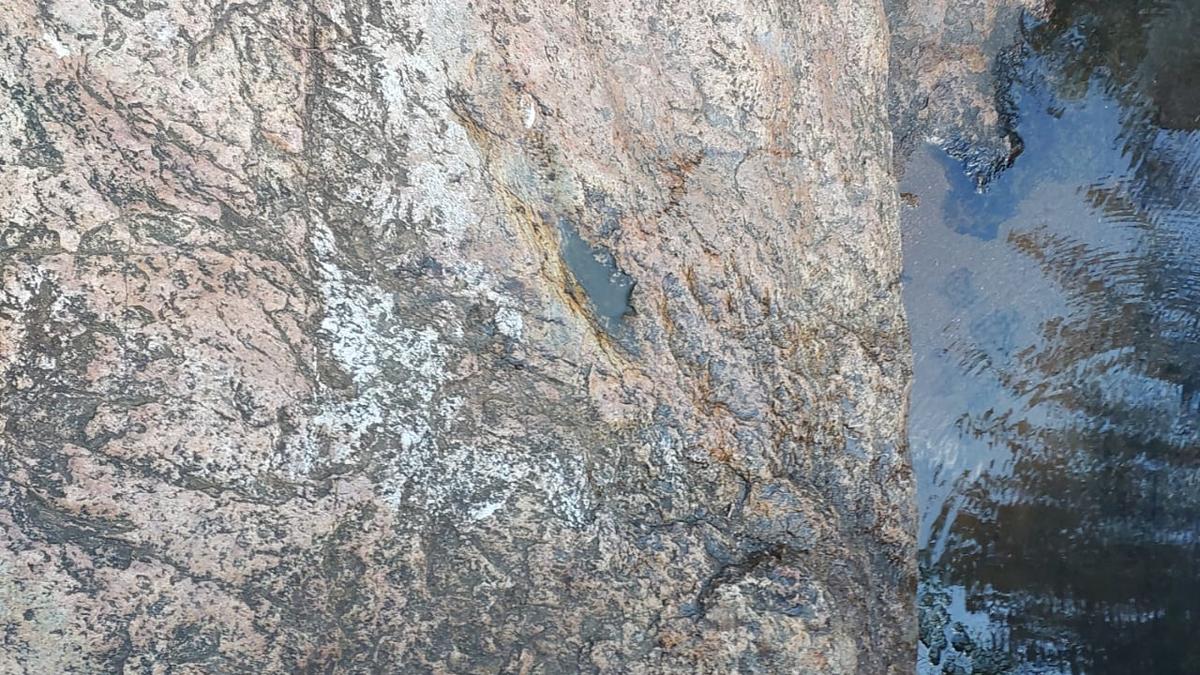
- 01 Jun 2025
In News:
The Archaeological Survey of India (ASI) has recently unearthed one of the first known Neolithic rock grooves in Kanniyakumari district, Tamil Nadu, specifically near Boothapandi village. These grooves—estimated to be around 4,000 years old—were likely created by Neolithic people to sharpen tools and weapons used for hunting, agriculture, and digging.
The discovery was made during a field study conducted by K. Hari Gopalakrishnan, ASI Officer (Tirunelveli &Kanniyakumari), and M. Faisal of the Sembavalam Research Centre. The grooves vary in size:
- Length: 8 cm to 15 cm
- Width: 3 cm to 4 cm
Such grooves have also been previously documented in Krishnagiri, Tiruvannamalai, and Villupuram districts of Tamil Nadu. The find strongly suggests the presence of Neolithic human activity in southernmost India and adds a significant layer to our understanding of prehistoric settlements in the region.
Neolithic Age
The Neolithic Age (New Stone Age) marks the final stage of prehistoric human evolution before the emergence of metal tools. Beginning around 10,000 BCE, it coincides with the Holocene Epoch and follows the Paleolithic Age (chipped-stone tools) and precedes the Bronze Age.
Key Features of the Neolithic Age
- Lifestyle Shift: Transition from hunting-gathering to agriculture and animal domestication.
- Permanent Settlements: Emergence of village communities with mud-and-reed houses, both rectangular and circular in design.
- Toolmaking: Development of polished and ground stone tools.
- Crafts and Culture: Rise of pottery, weaving, alcohol production, and early architecture.
- Burial Practices: Use of status objects (e.g., jade, pottery) in burials indicates belief in afterlife and emerging social hierarchies.
- By the end of the Neolithic era, copper metallurgy began, marking the Chalcolithic (Copper-Stone) Age. Eventually, bronze tools replaced stone ones, signaling the end of the Stone Age and the dawn of early civilizations.
Major Neolithic Sites in India
- Burzahom – Kashmir
- Chirand (Chiron) – Bihar
- Uttarapalli – Andhra Pradesh
- Edakkal Caves – Kerala
- Boothapandi (newly identified) – Tamil Nadu
Perito Moreno Glacier
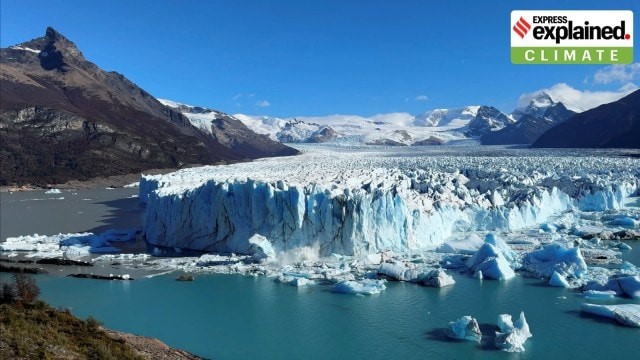
- 01 Jun 2025
In News:
- The Perito Moreno Glacier, often referred to as the ‘White Giant’, is Argentina’s most iconic glacier, located in the Los Glaciares National Park, a UNESCO World Heritage Site.
- Situated in the Andes Mountains, near El Calafate in Santa Cruz province, this glacier spans approximately 250 sq km—about the size of Patna, Bihar—and stretches 30 km in length, with ice walls rising 60 meters above water.
- Formed during the last Ice Age (~18,000 years ago), Perito Moreno has historically remained unusually stable, defying the global trend of rapid glacier retreat. However, this stability changed around 2020, raising alarms among scientists.
Recent Developments and Ice Calving Events
- Perito Moreno is globally renowned for its ice calving events, where massive blocks of ice break off into the lake with thunderous crashes. These events, though natural due to the glacier’s forward motion, have recently become more intense.
- On April 21, 2025, a colossal ice chunk the size of a 20-story building plunged 70 meters into the water—an increasingly frequent occurrence in the past 4–6 years.
- According to local experts and a 2024 government-backed report, the glacier has been retreating steadily since 2015, with an average mass loss of 0.85 meters annually—the fastest in nearly five decades.
- Between 2020 and 2023, the glacier lost over 700 meters of mass, equivalent to around seven large ice blocks.
Causes: Global Warming & Climate Impact
- The primary cause behind this dramatic retreat is climate change. Scientists from IANIGLA (Argentine Institute of Glaciology and Environmental Sciences) and CONICET state that the region has experienced an air temperature rise of 0.06°C per decade and reduced precipitation, leading to less snow accumulation and thinning of the glacier.
Global Perspective on Glacier Retreat
Perito Moreno is now part of a larger, alarming global trend.
- A 2024 study in Nature estimates that glaciers worldwide are losing 273 billion tonnes of ice annually, contributing to a 2 cm rise in global sea levels this century alone.
- A UNESCO report (March 2025) highlighted that glaciers (excluding Greenland and Antarctica) have shed over 9,000 billion tonnes of ice since 1975—comparable to an ice block the size of Germany with 25 meters thickness.
Environmental Significance
- Freshwater Source: Perito Moreno is a major reservoir of freshwater in Argentina.
- Tourism: The glacier attracts global tourists, boosting the local economy.
- Climate Indicator: Its recent retreat reflects the delayed but accelerating impact of global warming, making it a critical environmental bellwether.
World’s First 3D-Printed Train Station unveiled in Japan
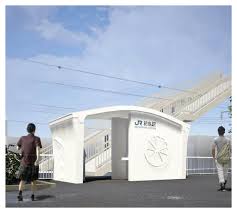
- 10 Apr 2025
In News:
Japan’s West Japan Railway Company has unveiled the world’s first 3D-printed train station — Hatsushima Station in Arida city. Notably, the station was constructed in less than six hours, highlighting a major advancement in construction technology.
Understanding 3D Printing (Additive Manufacturing)
What is 3D Printing?
3D Printing, or Additive Manufacturing, is a process of creating three-dimensional objects by layering material based on a digital design. Unlike traditional (subtractive) manufacturing, which removes material, this method adds material layer by layer, ensuring reduced waste and the ability to produce complex geometries.
How 3D Printing Works:
- Design Phase: A 3D digital model is created using CAD (Computer-Aided Design) software and saved in formats like .STL or .OBJ.
- Slicing: The model is sliced into horizontal layers using specialized software.
- Printing: The printer deposits material layer-by-layer according to the sliced file. Each layer solidifies to form the final shape.
- Post-Processing: The object is finished through processes such as curing, sanding, or painting.
Major 3D Printing Technologies:
- Fused Deposition Modelling (FDM): Uses melted thermoplastic filaments to build objects layer-by-layer.
- Selective Laser Sintering (SLS): Uses lasers to fuse powdered plastics or metals into solid forms.
- Direct Metal Laser Sintering (DMLS): Employs a laser to fuse metal powders — widely used in aerospace and medical sectors.
- Material Jetting: Deposits photopolymer droplets, cured with UV light — ideal for high-precision and colorful prototypes.
Limitations of 3D Printing:
- Material Restrictions: Only specific plastics, metals, and composites are compatible with given printers.
- Size Constraints: Limited build volume necessitates assembling larger items from smaller parts.
- Structural Weakness: Objects may have weak joints due to the layered structure, reducing suitability for high-stress uses.
- IP Challenges: Digital design files can be easily shared, posing risks of counterfeiting and intellectual property theft.
Electronics Components Manufacturing Scheme (ECMS)
- 10 Apr 2025
In News:
The Ministry of Electronics and Information Technology (MeitY) has notified the Electronics Components Manufacturing Scheme (ECMS) in April 2025. It marks a strategic step in India’s ambition to become a global electronics manufacturing hub.
Key Highlights of ECMS
- Objective: To incentivize domestic production of passive electronic components and capital equipment, thus deepening India's electronics manufacturing value chain.
- Scheme Tenure: Valid for 6 years, with a 1-year gestation period.
- Focus Components: Includes resistors, capacitors, relays, switches, speakers, connectors, inductors, special ceramics, and other passive components.
- Active components are supported separately under the India Semiconductor Mission (ISM).
- Incentive Structure:
- Turnover-linked incentive (based on incremental revenue).
- Capex-linked incentive (for investments in plant and machinery).
- Hybrid model (combining turnover and capex benefits).
Incentive rates range between 1–10%, varying by year and component type.
- Employment Mandate: All applicants—whether component manufacturers or capital equipment makers—must commit to job creation, ensuring broader socio-economic benefits.
Strategic Importance
- Horizontal Sectoral Impact: The scheme is designed to support multiple sectors including automotive, consumer electronics, medical devices, power electronics, and electrical grids, promoting cross-industry multiplier effects.
- Support for Tooling & Capital Equipment Industry: Encourages design and manufacture of capital tools and machinery required for electronics production, in line with models seen under the India Semiconductor Mission.
- Global firms like Linde have begun operations, with more in pipeline.
India’s Electronics Growth Trajectory
- Export Milestone (FY 2024–25):
- Total smartphone exports: ?2 lakh crore
- iPhone exports alone: ?1.5 lakh crore
- Sectoral Growth (Last Decade):
- 5x growth in production.
- 6x growth in exports.
- Export CAGR: >20%
- Production CAGR: >17%
- Manufacturing Base Expansion: Over 400 production units (large and small) now manufacture a wide range of electronic components domestically.
- Value Chain Evolution: India has transitioned from assembling finished goods → sub-assemblies → deep component manufacturing, now entering a value-added, self-reliant phase in electronics
One State, One RRB Policy
- 10 Apr 2025
In News:
The Government of India, through the Ministry of Finance, has implemented the "One State, One RRB" policy effective from May 1, 2025, aimed at consolidating 26 Regional Rural Banks (RRBs) across 10 states and 1 Union Territory, thereby reducing the total number of RRBs to 28. This move follows the recommendation of the Dr. Vyas Committee and is intended to enhance the performance and outreach of RRBs.
Objectives of the Policy
- Improve operational efficiency and governance.
- Rationalize costs and optimize resources (human and technological).
- Eliminate intra-state competition among sponsor banks.
- Promote uniform service delivery through technological integration.
About Regional Rural Banks (RRBs)
- Established: 1975 under the Regional Rural Banks Act, 1976.
- Recommended by: Narasimham Committee (1975).
- Ownership Pattern:
- Government of India – 50%
- State Government – 15%
- Sponsor Bank – 35%
Regulatory Structure
- Regulated by: Reserve Bank of India (RBI)
- Supervised by: NABARD (National Bank for Agriculture and Rural Development)
Role and Objectives
- Provide institutional credit to rural India.
- Support priority sectors like agriculture, MSMEs, and rural artisans.
- Ensure financial inclusion among farmers, labourers, and small entrepreneurs.
Impact of the Reform
- Operational Scale: Enhanced credit delivery across wider geographies.
- Technological Standardization: Easier integration of IT infrastructure.
- Unified Governance: One sponsor bank per state improves accountability.
- Performance: RRBs recorded an all-time high net profit of ?7,571 crore in FY 2023–24.
- Asset Quality: GNPA (Gross Non-Performing Assets) stood at 6.1%, the lowest in a decade.
Poshan Pakhwada 2025 and Palna Scheme
- 10 Apr 2025
In News:
The Ministry of Women and Child Development (MoWCD) is spearheading a dual approach to address malnutrition and childcare challenges in India through two flagship initiatives—Poshan Pakhwada 2025 and the Palna Scheme under Mission Shakti.
Poshan Pakhwada 2025
- 7th edition observed from April 8–22, 2025, under Poshan Abhiyaan.
- Focuses on four key themes:
- Nutrition in the first 1,000 days (conception to age two).
- Promotion of the Poshan Tracker digital platform.
- Community-based Management of Acute Malnutrition (CMAM).
- Encouraging a healthy lifestyle to reduce childhood obesity.
- Poshan Tracker App (AI-enabled; launched in 2021):
- Registers all Anganwadi Centres (AWCs).
- Enables real-time monitoring of beneficiaries, meal distribution, and health data.
- Allows family self-registration via web.
- CMAM protocol (introduced in 2023): Empowers Anganwadi workers to detect and manage malnutrition at the grassroots.
- Special focus on tribal and remote areas, promoting awareness on breastfeeding, balanced diets, and early stimulation.
- Campaign supported by 18 partner ministries, with outreach via village camps, home visits, and awareness drives.
Palna Scheme under Mission Shakti
- Centrally sponsored scheme launched in 2022, succeeding the National Crèche Scheme.
- Operates under the Samarthya sub-scheme of Mission Shakti.
- Aims to provide quality crèche services for children aged 6 months to 6 years, especially for working mothers.
Key Features:
- Implemented by: Ministry of Women and Child Development (MoWCD).
- Funding Ratio:
- 60:40 (Centre: State),
- 90:10 for NE and special category states.
- Two crèche models:
- Standalone Crèches near homes/workplaces.
- Anganwadi-cum-Crèches (AWCCs) integrated within Anganwadi Centres.
- Facilities Provided:
- Nutritional meals, growth monitoring, immunization.
- Early stimulation and pre-school education.
- Support for continued breastfeeding.
- Crèche Capacity: Each unit supports up to 25 children.
- As of March 2025:
- 11,395 AWCCs approved across 34 States/UTs; 1,761 operational, catering to ~28,783 children.
- 1,284 Standalone Crèches operational with ~23,368 children enrolled.
- 17,000 new AWCCs planned for 2024–25.
- Legal Backing: Mandated in workplaces with 50+ employees under the Maternity Benefit Act (amended).
Significance for India
Together, Poshan Pakhwada and Palna contribute to achieving SDG 2 (Zero Hunger) and SDG 3 (Good Health and Well-being) by ensuring a lifecycle approach to nutrition and holistic early childhood care. They reflect the government's commitment to digital governance, gender empowerment, and inclusive development.
Niveshak Didi
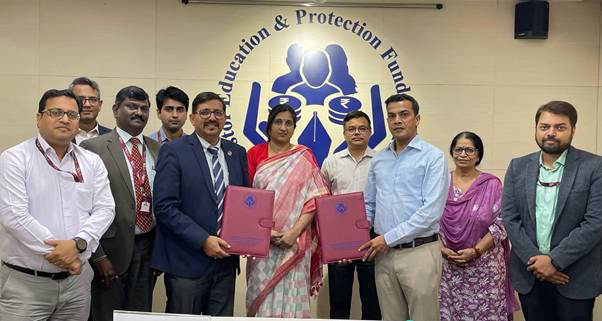
- 10 Apr 2025
In News:
In a significant push toward inclusive financial literacy, the Investor Education and Protection Fund Authority (IEPFA), under the Ministry of Corporate Affairs, and the India Post Payments Bank (IPPB), under the Department of Posts, Ministry of Communications, have signed a Memorandum of Agreement (MoA) to launch Phase 2 of the “Niveshak Didi” initiative in April 2025.
Objective:
The Niveshak Didi initiative, launched in 2023, is a women-led, community-driven financial literacy program designed to empower rural and underserved populations by fostering responsible financial behavior, promoting digital banking, and spreading fraud awareness.
Key Highlights:
- Target Group: Rural women and semi-urban communities.
- Approach: Local women, especially postal workers, are trained as financial educators (Niveshak Didis).
- Impact of Phase 1:
- Over 55,000 beneficiaries reached, with 60% women, predominantly from deep rural areas.
- Most beneficiaries belonged to the youth and economically active age groups.
Phase 2 (2025 Onward):
- Deployment of 4,000+ financial literacy camps across rural, tribal, and semi-urban areas.
- Training of 40,000 women postal workers to serve as grassroots financial educators.
- Curriculum Focus:
- Savings and budgeting.
- Responsible investing and fraud prevention.
- Digital tools and services provided by IPPB.
- Digital Inclusion: Leveraging India Stack for paperless and presence-less banking; training delivered in 13 regional languages.
About Investor Education and Protection Fund Authority (IEPFA)
- Statutory Body: Functions under the Ministry of Corporate Affairs, Government of India.
- Objective: Ensures informed and protected investors across India.
- Key Role:
- Promotes financial literacy to aid budgeting, saving, and investment decisions.
- Empowers citizens to make sound financial choices.
- Focus Areas:
- Educates citizens on investor rights and responsibilities.
- Special outreach to rural and underserved areas to bridge financial knowledge gaps.
- Vision: To build a financially aware and confident India, where every citizen has the tools to secure their financial future.
About India Post Payments Bank (IPPB)
- Established: On September 1, 2018 under the Department of Posts, Ministry of Communications.
- Ownership: 100% equity owned by the Government of India.
- Mission: To be the most accessible, affordable, and trusted bank for the common man.
- Mandate:
- Bridge financial inclusion gaps for the unbanked and underbanked.
- Leverage the vast postal network of approx. 1.65 lakh post offices (1.4 lakh in rural areas) and 3 lakh postal employees.
- Technology Backbone:
- Based on India Stack: Paperless, Cashless, and Presence-less banking.
- Uses CBS-integrated smartphones and biometric devices.
- Commitment:
- Promotes a less-cash economy.
- Supports the vision of Digital India.
- Motto: Every customer is important, every transaction is significant, every deposit is valuable.
India Skills Accelerator Initiative (2025)
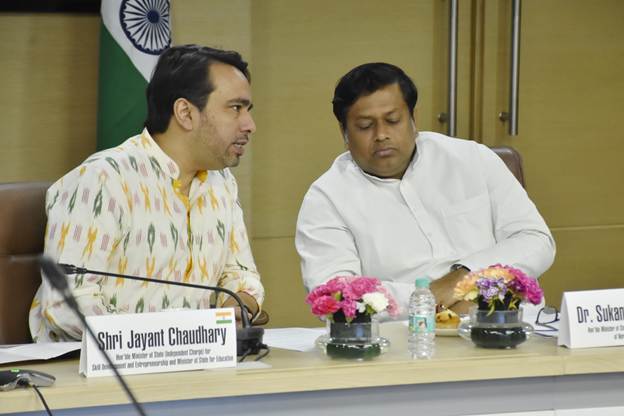
- 09 Apr 2025
In News:
The Ministry of Skill Development and Entrepreneurship (MSDE) has partnered with the World Economic Forum (WEF) to launch the India Skills Accelerator—a national-level public-private collaboration platform aimed at fostering a future-ready and inclusive workforce.
Key Features:
- Purpose: To act as a systemic change enabler in India's skilling ecosystem through a multi-stakeholder, cross-sectoral approach.
- Core Objectives:
- Enhance awareness and shift mindsets about the need for future skills.
- Promote collaboration and knowledge sharing between government, industry, and academia.
- Reform policies and institutional structures for an agile and responsive skilling framework.
- Sectoral Priorities:
- Focus on high-growth areas: AI, robotics, cloud computing, cybersecurity, advanced manufacturing, energy, and Global Capability Centres (GCCs).
- Emphasis on formalizing the informal workforce.
- Lifelong Learning: Mobilize investments in upskilling and reskilling across various life stages to support agile career transitions.
- Data-Driven Governance: Use surveys, mapping tools, and the WEF’s Global Learning Network for peer benchmarking and progress tracking.
- Implementation Strategy:
- Identify 10–12 high-impact priorities with measurable outcomes.
- Establish thematic working groups to ensure coordinated execution.
- Align initiative with the WEF’s Future of Jobs Report 2025.
Significance
- Addresses the fact that 65% of organizations cite skill gaps as a major barrier to growth.
- Positions India to leverage its demographic dividend and become the "Skill Capital of the World".
- Supports India's goal of skilling not just for domestic needs but also for global workforce demand.
- Reinforces federal cooperation, involving institutions like NSDC, NCVET, DGT, UGC, AICTE, NCERT, and CBSE.
Quantum Supremacy Demonstrated via Simple Game
- 09 Apr 2025
In News:
Researchers from the University of Oxford and Universidad de Sevilla have demonstrated quantum supremacy using a simple mathematical game based on the odd-cycle graph colouring problem. The study, published in Physical Review Letters, marks a significant milestone in quantum computing.
What is Quantum Supremacy?
Quantum supremacy refers to the ability of a quantum computer to perform a task that is practically impossible for classical computers to solve efficiently. This advancement showcases the unique capabilities of qubits, which leverage two core principles:
- Superposition: Qubits can represent both 0 and 1 simultaneously.
- Entanglement: Measurement of one qubit instantly affects another, even over a distance.
These principles enable exponential scaling of computational power. For instance, a 50-qubit quantum computer could potentially outperform the most powerful classical supercomputers.
The Odd-Cycle Game: A Novel Approach
The team implemented a game inspired by graph theory:
- Players (Alice and Bob) are tasked with colouring an odd-numbered cycle (e.g., triangle) using only two colours such that adjacent points differ in colour.
- Mathematically, this is impossible in classical terms for odd cycles due to inevitable repetition of colours.
In the experiment:
- Two strontium atoms placed 2 meters apart were entangled using lasers.
- A referee sent each atom a "question" (mapped to a point on the cycle).
- Players performed quantum operations based on the questions and returned either 0 or 1 (representing colours).
The experiment was repeated 101,000 times, covering circles from 3 to 27 points.
Results and Significance
- Classical win rate: 83.3% for 3-point cycles.
- Quantum win rate: 97.8%, clearly surpassing classical limits.
- Quantum supremacy was evident up to 19-point circles.
- The entanglement correlation was the strongest ever recorded between two separated quantum systems.
Comparison with Previous Demonstrations
- Google’s Sycamore (2019): Used 53 superconducting qubits for a complex problem called random circuit sampling.
- China’s Jiuzhang: Used Gaussian boson sampling.
- In contrast, this new approach used just two entangled qubits, making it simpler, efficient, and easier to verify.
Practical Implications
This simplified game-based model of quantum advantage could have real-world applications in problems where coordination is needed without communication—such as the "rendezvous problem". Quantum systems can dramatically reduce search steps compared to classical ones (e.g., Grover’s algorithm can reduce 1 million steps to 1,000).
ESA Biomass Satellite Mission
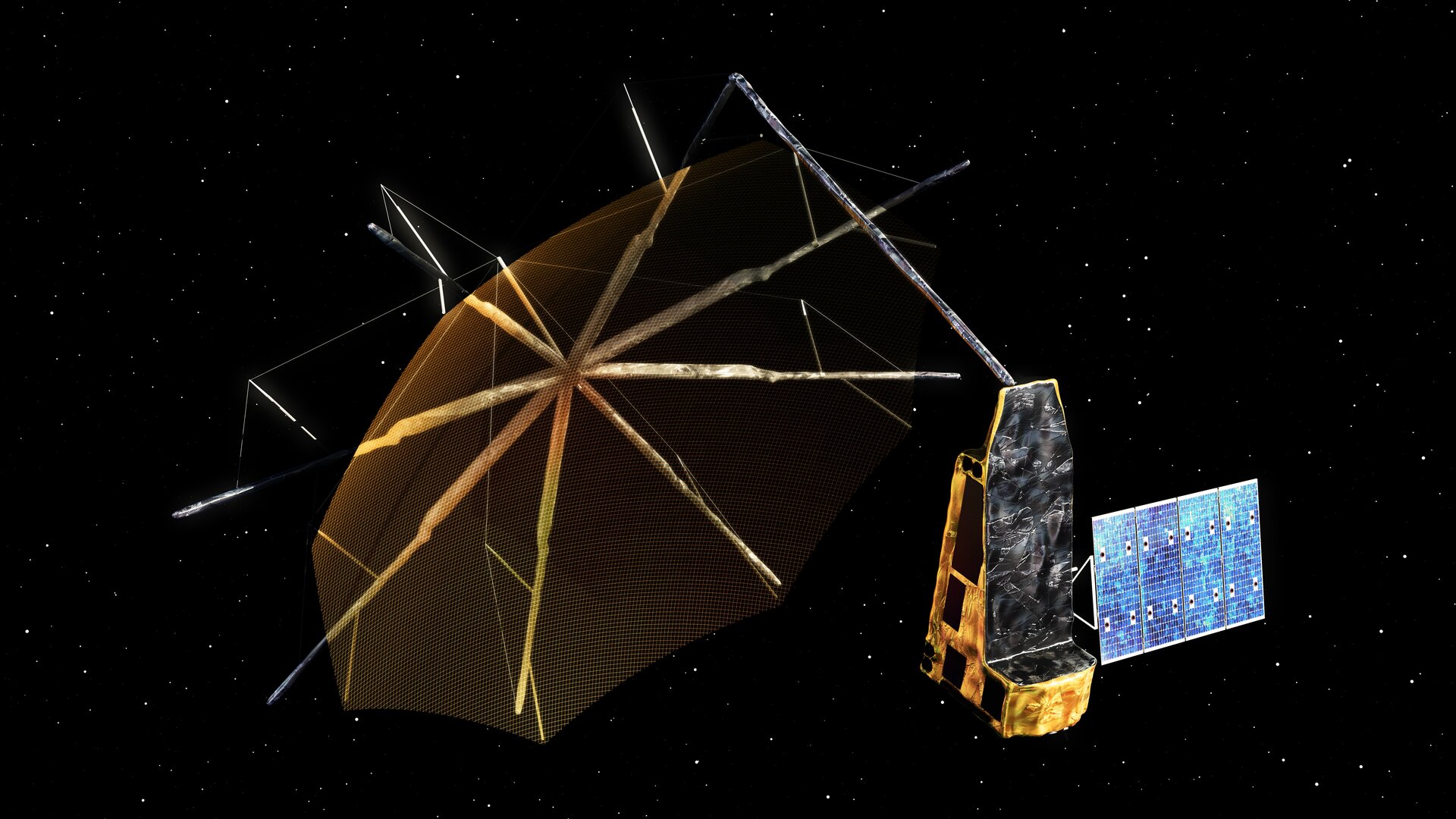
- 09 Apr 2025
In News:
The Biomass Mission is a new Earth observation mission by the European Space Agency (ESA) aimed at enhancing our understanding of the global carbon cycle through accurate forest biomass measurements.
Launch Details:
- Rocket: Vega-C
- Launch Site: Europe’s Spaceport, French Guiana
- Orbit: Sun-Synchronous Orbit (SSO) at an altitude of ~666 km
- Scheduled Launch Date: 29 April 2025 (subject to final checks)
Key Features:
- First satellite to use P-band radar (long-wavelength synthetic aperture radar).
- Capable of penetrating dense forest canopies to scan tree trunks, branches, and stems — where most of a tree’s carbon is stored.
- Will generate 3D maps of the world’s tropical forests.
Mission Objectives:
- Measure above-ground forest biomass and forest height.
- Create five global biomass maps over its five-year mission.
- Monitor changes in forests to assess their role in carbon sequestration and climate regulation.
Scientific Importance:
- Forests absorb ~8 billion tonnes of CO? annually and are often referred to as "Earth’s green lungs."
- By analyzing forest carbon storage and changes, the mission will contribute significantly to:
- Monitoring climate change
- Supporting carbon accounting
- Improving air quality assessments
Phases of the Mission:
- Initial Phase: Produces detailed 3D forest maps globally.
- Second Phase: Generates global estimates of forest height and biomass.
Relevance to Climate Action:
- Helps in quantifying carbon uptake and release.
- Supports global climate models and carbon budgeting.
- Aids in policy-making for sustainable forest management.
Theobaldius konkanensis
- 09 Apr 2025
In News:
A new species of land snail, Theobaldius konkanensis, has been discovered by a collaborative team of Indian and UK researchers from the Konkan region of Maharashtra. This species adds to the growing biodiversity records of the northern Western Ghats, a globally recognized but under-explored biodiversity hotspot.
Key Facts at a Glance
- Scientific Name: Theobaldius konkanensis
- Discovered in: Ratnagiri and Raigad districts, Maharashtra (Dev Gireshwar Temple, Uttamrao Patil Biodiversity Garden, Kesharnath Vishnu Temple, and Phansad Sanctuary)
- Elevation: 80–240 metres above sea level
- Habitat: Tropical evergreen and semi-evergreen forests
- Active Months: June to September (monsoon); only shells visible in other months
- Habits: Active both day and night, often under forest canopy in shaded, moist leaf litter
Morphological Features
- Shell Characteristics:
- Slightly flattened with a raised centre and deep triangular notch near the aperture
- Operculum (protective cover) has raised whorl edges and short spines
- Corneous yellow with brown striations
- Thick, conoidally depressed, and widely umbilicated
- Body: Stout and rounded
Taxonomic Context
- Family: Cyclophoridae (Caenogastropoda)
- Genus: Theobaldius
- Now includes 20 species: 9 in India, 11 in Sri Lanka, and 1 in Sumatra (Indonesia)
- In India, 6 species are endemic to the Western Ghats
- Only T. annulatus is found in both Sri Lanka and the Western Ghats
Ecological and Conservation Significance
- Bioindicators: Land snails are sensitive to climatic changes and environmental disturbances
- Endemism: T. konkanensis is restricted to specific forest patches in the Konkan, highlighting the ecological uniqueness of the region
- Threats: Increasing anthropogenic pressures and habitat degradation threaten snail species with restricted distribution
Reproductive Biology (General Traits of Land Snails)
- Breeding mainly in monsoon
- Reproduce through both cross- and self-fertilisation
- Courtship includes dart-shooting behavior; mating may last hours
- Eggs laid in moist soil or leaf litter; hatch in 2–4 weeks
- Lifespan: 2 to 7 years
De-Extinction
- 09 Apr 2025
In News:
A US biotech company, Colossal Biosciences, claims to have genetically engineered three grey wolf pups to carry traits of the extinct dire wolf, calling it a de-extinction.
What is De-Extinction?
De-extinction is the process of reviving extinct species using advanced biotechnological methods such as:
- Gene editing (e.g., CRISPR-Cas9),
- Cloning (e.g., somatic cell nuclear transfer),
- Ancient DNA sequencing and genome reconstruction,
- Synthetic biology to reintroduce key traits of extinct organisms.
Colossal Biosciences and the Dire Wolf Project
In late 2024, a U.S.-based biotechnology firm, Colossal Biosciences, announced the birth of three genetically engineered wolf pups—Romulus, Remus, and Khaleesi—claimed to be the world’s first successful case of "functional de-extinction."
About the Dire Wolf
- Scientific name: Aenocyon dirus
- Habitat: Grasslands and forests of North America during the Pleistocene Epoch
- Extinction: ~12,500–13,000 years ago
- Characteristics: 25% larger than modern grey wolves; strong jaws to hunt megafauna like bison and horses; light-colored dense fur; social, pack-hunting predators.
Scientific Process Involved
- DNA Extraction: Ancient DNA was recovered from dire wolf fossils (13,000 to 72,000 years old).
- Genome Reconstruction: Sequencing and comparative analysis showed ~99.5% similarity between dire wolves and modern grey wolves.
- Gene Editing: Scientists edited 20 genes in grey wolves to replicate dire wolf traits like:
- White, thick fur
- Increased body mass
- Enhanced musculature and coat pattern
- Cloning: Modified DNA was used to create embryos via somatic cell nuclear transfer.
- Surrogacy: Embryos were implanted in large domestic dogs. Of several attempts, three pups survived.
Scientific and Ethical Concerns
- Experts argue these are not true dire wolves but genetically edited grey wolves with some dire wolf-like traits.
- Critics highlight the absence of peer-reviewed publication, limited understanding of epigenetic and behavioral factors, and the artificial environment in which the pups are raised.
- Colossal terms the process "functional de-extinction", meaning re-creating genetically and ecologically similar organisms, not exact replicas.
Ecological and Conservation Relevance
- Colossal claims the technology could help endangered species like the red wolf (native to the southeastern U.S.), threatened by habitat loss and hybridization with coyotes.
- Four clones of red wolf–coyote hybrids have been produced with potential use in restoring genetic diversity.
- The company aims to democratize conservation biotechnology, pledging to share tools with global conservationists and working with Native American communities.
Contemporary Debates
- Over 60 environmental groups have protested proposed U.S. legislation to delist grey wolves from the Endangered Species Act, warning of ecological consequences.
- Scientists urge caution, stressing that true resurrection of extinct species requires more than gene editing, as behavior, evolutionary context, and environmental adaptation cannot be synthetically replicated.
Food and Agriculture Organization (FAO)
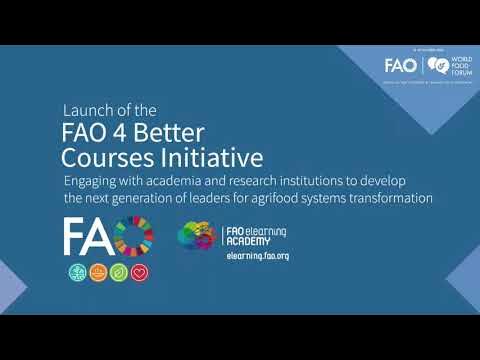
- 08 Apr 2025
In News:
The Food and Agriculture Organization (FAO) has launched two major global initiatives to advance inclusive and sustainable agrifood systems:
- “Four Betters Courses” Initiative – To revolutionize agrifood systems education
- “Commit to Grow Equality” Initiative – To bridge the gender gap in agrifood sectors
1. Four Betters Courses Initiative
- Launched: October 2024 during the World Food Forum
- Objective: To integrate FAO’s expertise into global agrifood systems education through partnerships with universities and academic networks.
- Alignment: Anchored in the FAO Strategic Framework 2022–2031
Core Philosophy – The “Four Betters” Approach:
- Better Production – Promote efficient, inclusive, and resilient food systems
- Better Nutrition – Ensure access to safe, nutritious, and affordable diets
- Better Environment – Address climate change and protect ecosystems
- Better Life – Improve rural livelihoods and reduce inequalities
- Delivery Platform: Implemented through the FAO eLearning Academy, which provides over 600 multilingual, certified courses.
2. Commit to Grow Equality (CGE) Initiative
- Launched: 2024 on the platform of the United Nations General Assembly (UNGA)
- Objective: To narrow the gender gap in agrifood systems and enhance women’s empowerment, especially in rural areas.
Key Highlights:
- Aims to benefit over 54 million women worldwide
- Mobilizes $1 billion in investments toward gender-responsive agrifood initiatives
- Provides strategic tools for tracking gender equality outcomes in public and private sectors
- Promotes gender-aligned national agricultural policies
- Facilitates evidence-based policymaking and fosters collaboration across governments, NGOs, and the private sector
Pradhan Mantri MUDRA Yojana (PMMY)
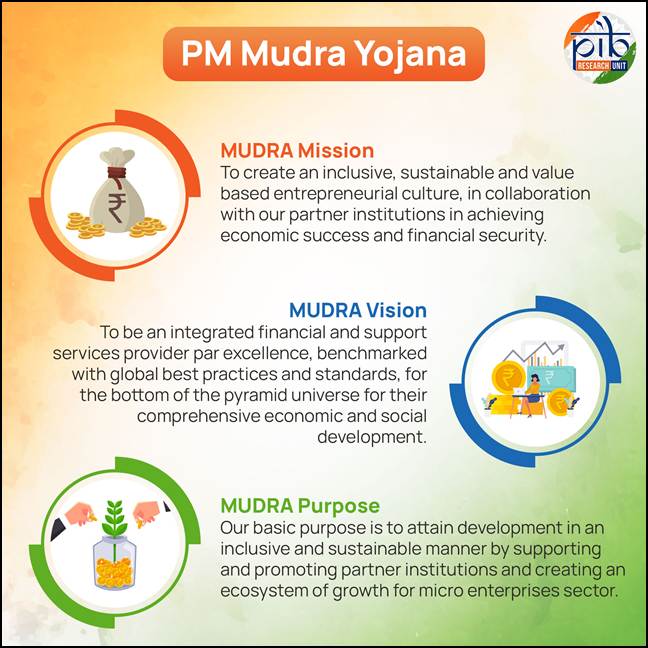
- 08 Apr 2025
In News:
The Pradhan Mantri MUDRA Yojana (PMMY), a flagship initiative aimed at providing financial support to unfunded micro and small enterprises, has completed 10 years since its launch in 2015.
Overview of PMMY
- Objective: To offer collateral-free institutional credit to non-corporate, non-farm micro and small enterprises.
- Loan Limit: Up to ?20 lakh without any collateral.
- Implementing Institutions (MLIs):
- Scheduled Commercial Banks
- Regional Rural Banks (RRBs)
- Non-Banking Financial Companies (NBFCs)
- Micro Finance Institutions (MFIs)
Categories of MUDRA Loans
Loan Category Loan Amount Range
Shishu Up to ?50,000
Kishor ?50,000 to ?5 lakh
Tarun ?5 lakh to ?10 lakh
Tarun Plus ?10 lakh to ?20 lakh
Key Achievements (2015–2025)
- Boost to Entrepreneurship: PMMY has sanctioned over 52 crore loans amounting to ?32.61 lakh crore, catalyzing a grassroots entrepreneurship revolution.
- MSME Sector Financing: Lending to MSMEs increased significantly:
- From ?8.51 lakh crore in FY14
- To ?27.25 lakh crore in FY24
- Projected to exceed ?30 lakh crore in FY25
- Women Empowerment: 68% of Mudra beneficiaries are women, highlighting the scheme’s impact in fostering women-led enterprises.
- Social Inclusion:
- 50% of loan accounts are held by SC, ST, and OBC entrepreneurs.
- 11% of beneficiaries belong to minority communities, showcasing PMMY’s contribution to inclusive growth.
Woolly Flying Squirrel
- 08 Apr 2025
In News:
The Wildlife Wing of the Himachal Pradesh Forest Department (HPFD) has recently documented the first-ever photographic evidence of the Woolly Flying Squirrel in Miyar Valley, located in the Lahaul and Spiti district. This marks a significant discovery, as the species is extremely elusive and rarely sighted.
About Woolly Flying Squirrel
- Common Name: Woolly Flying Squirrel / Western Woolly Flying Squirrel
- Scientific Name: Eupetaurus cinereus
- Taxonomy: The only known species under the genus Eupetaurus
- Conservation Status: Listed as Endangered on the IUCN Red List
Habitat and Distribution
- Endemism: Confined to the northwestern Himalayas
- Countries Found: Northern Pakistan and northwestern India
- Habitat Type: Inhabits a narrow elevational range within dry coniferous forests, typically in fragmented habitats
- Historical Records:
- Rediscovered in 1994, nearly 70 years after it was presumed extinct
- Since then, reported from Sai Valley, Gorabad, and Balti Gali in northern Pakistan
Key Characteristics
- Equipped with patagium (elastic skin membrane) that connects the forelimbs and hind limbs, enabling gliding—typical of flying squirrels
- Fur: Dense, straight, and silky
- Dorsal side: Blue-gray
- Ventral side: Pale gray
- Throat and ears: Covered in creamy white hairs
- Feet soles: Dense black fur, except for bare pinkish-brown toe pads
World Health Day 2025
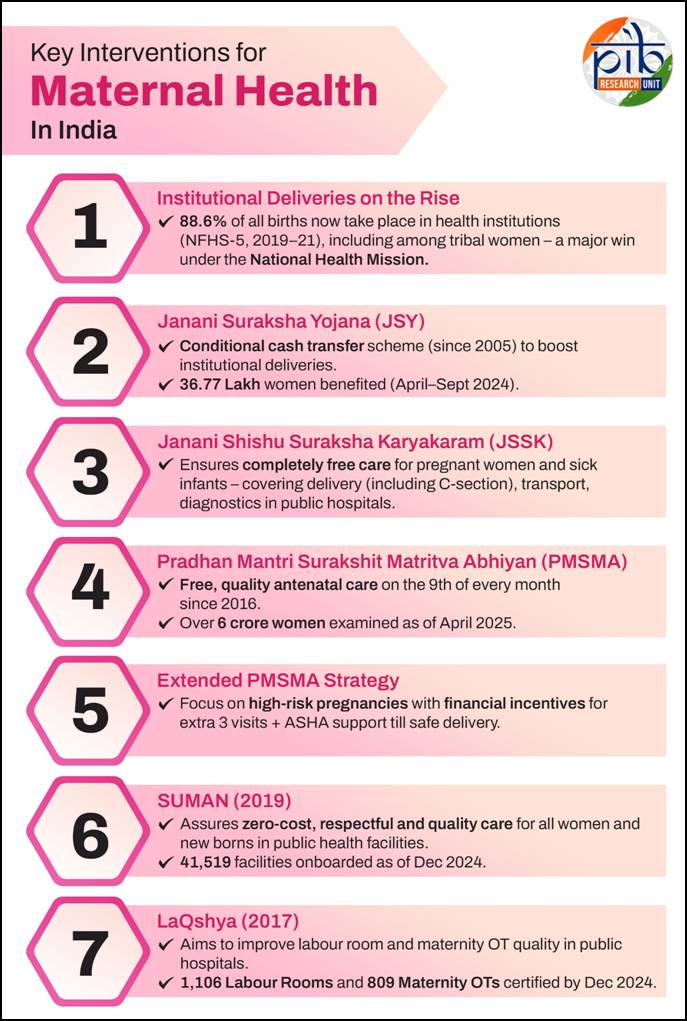
- 08 Apr 2025
In News:
World Health Day, observed annually on 7 April, highlights pressing global health issues and mobilises action to improve public health outcomes.
- Established by: World Health Organization (WHO)
- First celebrated: 1950
Overview and Significance
World Health Day is commemorated to mark the founding of the WHO in 1948. It serves to raise awareness about global health issues and mobilize efforts to improve public health outcomes.
The 2025 theme, Healthy Beginnings, Hopeful Futures, emphasizes maternal and newborn health, calling for coordinated efforts to eliminate preventable deaths and support long-term well-being of women and children.
This year’s observance launches a year-long global campaign aimed at:
- Promoting safe pregnancies and institutional deliveries
- Supporting maternal nutrition and postnatal care
- Encouraging healthcare equity for women and newborns
India’s Progress in Maternal and Child Health
India has made significant strides through initiatives under the Ministry of Health and Family Welfare, particularly via Ayushman Bharat and the National Health Mission (NHM).
Key Health Indicators (India vs Global, 1990–2020)
Indicator India Reduction (%) Global Reduction (%)
Maternal Mortality Ratio 83% 42%
Neonatal Mortality Rate 65% 51%
Infant Mortality Rate 69% 55%
Under-5 Mortality Rate 75% 58%
Recent National Data:
- MMR reduced from 130 (2014–16) to 97 (2018–20) per 1,00,000 live births
- IMR dropped from 39 (2014) to 28 (2020)
- NMR reduced from 26 (2014) to 20 (2020)
- U5MR declined from 45 (2014) to 32 (2020)
Major Initiatives for Maternal and Child Health
- Maternal Death Surveillance and Response (MDSR): Tracks maternal deaths and implements corrective measures.
- Mother and Child Protection (MCP) Card: Educates women on nutrition, rest, and health entitlements.
- Reproductive and Child Health (RCH) Portal: Tracks maternal and child health services.
- Anaemia Mukt Bharat: Focuses on anaemia reduction under POSHAN Abhiyan.
- Birth Waiting Homes: Ensures institutional deliveries in remote areas.
- VHSNDs and Outreach Camps: Deliver maternal and child services in rural and tribal areas.
Healthcare Access and Infrastructure
- Ayushman Arogya Mandirs (HWCs): 1.76 lakh active centers
- 107.10 crore screenings for hypertension
- 94.56 crore screenings for diabetes
- 5.06 crore wellness sessions (e.g., yoga) conducted
- 17,000+ health facilities certified under National Quality Assurance Standards (NQAS)
Digital Health Ecosystem
- Ayushman Bharat Digital Mission (ABDM):
- 76+ crore ABHA IDs
- 5.95 lakh verified healthcare professionals
- 52+ crore linked health records
- U-WIN Platform:
- 7.90 crore beneficiaries
- 1.32 crore vaccination sessions
- 29.22 crore vaccine doses administered
- eSanjeevani Telemedicine:
- Over 36 crore consultations
- World's largest primary telehealth platform
- 130+ specialities, 131,793 spokes, and 17,051 hubs
Disease Elimination Success
- The WHO World Malaria Report 2024 highlights India’s major strides in malaria elimination, with a 69% drop in cases and 68% reduction in deaths between 2017 and 2023.
- Contributing just 0.8% of global cases in 2023, India’s exit from WHO's High Burden to High Impact (HBHI) group in 2024 marks a significant public health achievement.
- The Government of India has eliminated Trachoma as a public health problem in 2024, a feat recognised by the WHO.
- The Government of India’s proactive Measles-Rubella vaccination drive, strong surveillance, and public awareness efforts have greatly improved public health.
- According to WHO’s Global TB Report, India has made strong progress in tuberculosis control.
- Under the National Tuberculosis Elimination Programme (NTEP), TB incidence fell by 17.7%, from 237 to 195 cases per lakh population between 2015 and 2023.
- TB-related deaths also declined from 28 to 22 per lakh.
- Notably, missing TB cases dropped by 83%, from 15 lakh in 2015 to 2.5 lakh in 2023.
- As of 6th April, 2025, the Pradhan Mantri TB Mukt Bharat Abhiyaan, launched in September 2022, has registered over 2.5 lakh Ni-kshay Mitra volunteers supporting over 15 lakh TB patients. This initiative has further been expanded to include family members of TB patients.
- Kala-azar Elimination: India has successfully achieved Kala-azar elimination as of October 2024, with 100% of endemic blocks reaching the target of less than one case per 10,000 population by the end of 2023.
INS Varsha
- 08 Apr 2025
In News:
India is set to operationalise INS Varsha, its first dedicated base for nuclear-powered submarines, by 2026. Located near Rambilli, about 50 km south of Visakhapatnam, Andhra Pradesh, this high-security facility is part of the classified Project Varsha, aimed at strengthening India’s maritime and nuclear deterrence capabilities in the Bay of Bengal and Indian Ocean Region (IOR).
Key Features:
- Strategic Location: Near deep waters of the Bay of Bengal, facilitating stealthy submarine movement and minimizing detection.
- Infrastructure:
- Underground pens and tunnel systems to conceal and protect nuclear submarines.
- Inner and outer harbour facilities; inner harbour completed, work ongoing on breakwaters and jetties.
- 20 sq. km area, capacity to house at least 10–12 nuclear submarines.
- Stealth Capabilities: Similar to China’s Hainan base, it offers satellite-evasion advantages, crucial for the survivability of SSBNs (nuclear-powered ballistic missile submarines).
- Support Facilities: Proximity to BARC Atchutapuram for nuclear infrastructure, enabling swift integration and maintenance of strategic assets.
- Geopolitical Role: Counters Chinese dual-use naval infrastructure at Hambantota (Sri Lanka) and BNS Sheikh Hasina (Bangladesh).
Strategic Significance:
- Enhances second-strike capability, vital for nuclear deterrence under India's nuclear triad.
- Enables undetected deterrent patrols by SSBNs, ensuring survivability in case of counterforce attacks.
- Facilitates rapid access to key chokepoints, especially the Strait of Malacca.
India’s Expanding Nuclear Submarine Fleet
INS Aridhaman – Third SSBN:
- Scheduled for commissioning in 2025.
- 7,000-tonne displacement, more capable than predecessors INS Arihant and INS Arighat.
- Equipped with K-4 Submarine-Launched Ballistic Missiles (SLBMs) with a range of 3,500 km.
- Built under the Advanced Technology Vessel (ATV) project by Shipbuilding Centre, Visakhapatnam, with BARC and DRDO support.
- Designed for long-duration deterrent patrols in deep sea.
Future Developments:
- India launched its fourth SSBN in November 2024, with ~75% indigenous content.
- Plans underway for even larger SSBNs and the construction of six nuclear-powered attack submarines (SSNs), starting with two approved 9,800-tonne SSNs for conventional strike and escort roles.
Related Naval Expansion – Project Seabird (Karwar Base):
- Located on the western coast, expanding to accommodate 50 warships and submarines, plus 40 auxiliary vessels.
- Will include a dual-use air station, new dockyard, and multiple dry berths.
Ayush Suraksha Portal
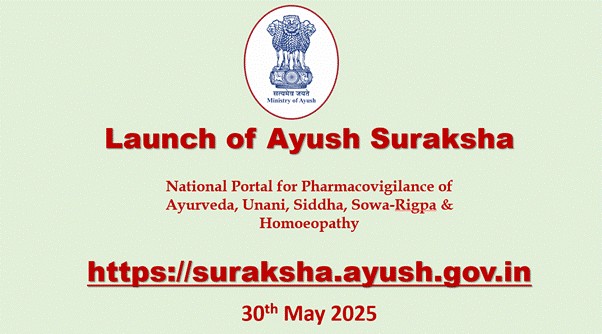
- 31 May 2025
In News:
The Ayush Suraksha Portal was launched in May 2025 by the Union Minister of State (Independent Charge) for Ayush, in compliance with the Supreme Court's directive. The portal marks a major step in enhancing regulatory oversight, public safety, and pharmacovigilance within the Ayush sector.
Objective
The portal aims to:
- Monitor and act on misleading advertisements.
- Track and respond to adverse drug reactions (ADRs).
- Promote transparency, accountability, and public participation in the regulation of traditional medicine systems.
Key Features
- Centralised digital platform for real-time reporting and analysis of misleading advertisements and ADRs.
- Accessible to the general public, healthcare professionals, and regulatory authorities.
- Ensures direct citizen participation by allowing users to report issues and track action taken.
- Developed with technical support from the Central Council for Research in Siddha (CCRS).
- Integrated with the National Pharmacovigilance Program for Ayush.
Institutional Integration
The portal coordinates with multiple regulatory and enforcement bodies:
- Ayush vertical under CDSCO
- Ministry of Information & Broadcasting (MoI&B)
- Central Consumer Protection Authority (CCPA)
- National Commission for Indian System of Medicine (NCISM)
- National Commission for Homoeopathy (NCH)
- Pharmacy Council of India (PCI)
- Food Safety and Standards Authority of India (FSSAI)
- State Licensing Authorities (SLAs)
Significance
- Meets the Supreme Court’s deadline ahead of time, reinforcing legal compliance.
- Enables real-time regulatory action, inter-state coordination, and data-driven governance.
- Enhances public trust and safety in the use of traditional medicines.
- Reflects the Ministry of Ayush’s commitment to evidence-based practices and responsible governance.
National Florence Nightingale Award 2025
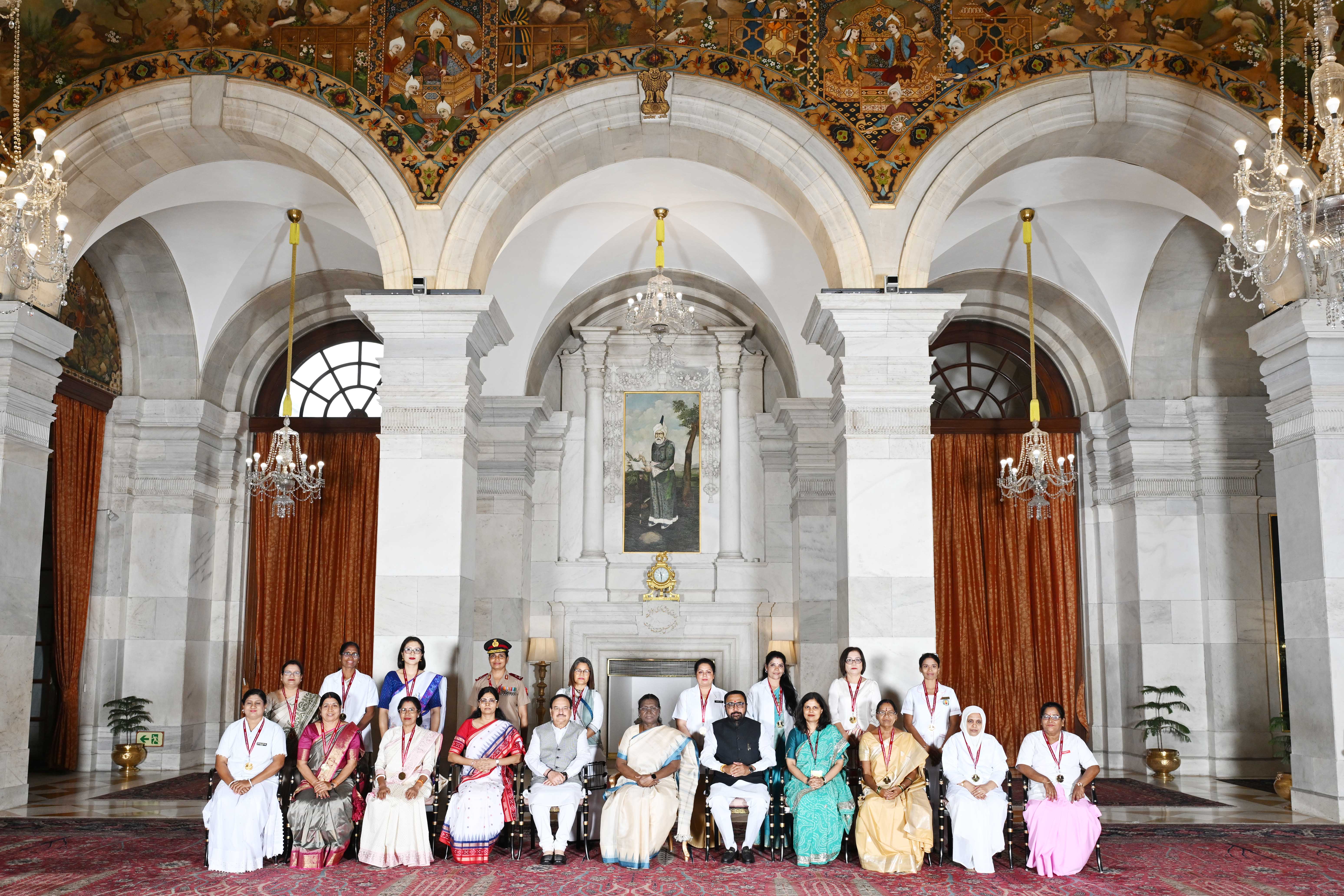
- 31 May 2025
In News:
The President of India recently conferred the National Florence Nightingale Awards 2025 to exemplary nursing professionals in a formal ceremony held at Rashtrapati Bhavan.
About the National Florence Nightingale Awards
- Established: 1973
- Administered by: Ministry of Health and Family Welfare, Government of India
- Purpose: To honour exceptional contributions of nursing personnel across India in recognition of their meritorious service to society.
The award is open to nurses working in government, private, and voluntary healthcare settings, including hospitals, community health centres, educational institutions, and administrative roles.
Award Components
- Certificate of Merit
- Cash Prize: ?1,00,000
- Medal of Honour
About Florence Nightingale
- Florence Nightingale (1820–1910) was a pioneering English nurse, social reformer, and statistician, widely considered the founder of modern nursing.
- She gained recognition during the Crimean War for organizing the care of wounded soldiers in Constantinople (now Istanbul).
She also revolutionized nursing education by establishing the Nightingale School of Nursing at St. Thomas’ Hospital, London, the first institution based on scientific nursing principles.
Ahilyabai Holkar
- 31 May 2025
In News:
On the 300th birth anniversary of Maharani Ahilyabai Holkar, the Prime Minister will participate in the Mahila Sashaktikaran Maha Sammelan in Bhopal to honour her enduring legacy.
Historical Background
- Born: 31 May 1725
- Ruled: Malwa region (1767–1795) as part of the Maratha Confederacy
- Dynasty: Holkar
- Capital: Maheshwar (now in Madhya Pradesh)
Initially serving as a regent, Ahilyabai Holkar became the sovereign ruler after her husband and father-in-law’s deaths. Her rule is widely regarded as the golden age of the Holkar dynasty.
Governance and Administrative Reforms
- Ahilyabai was known for her equitable justice system, exemplified by the sentencing of her own son for a capital crime.
- She abolished discriminatory practices, such as the law confiscating property from childless widows.
- Courts for dispute resolution were established, and she remained accessible to the public, holding daily audiences.
- She broke gender norms by not observing purdah, a rare move for female rulers of the time.
Military Leadership
- Trained under Malhar Rao Holkar, she led her forces in battle.
- Appointed Tukoji Rao Holkar (Malhar Rao’s adopted son) as army commander.
- In 1792, she engaged a French officer, Chevalier Dudrenec, to modernize her army by establishing four battalions.
Cultural and Architectural Contributions
- A patron of literature and arts, she invited scholars like Moropant, Ananta Gandhi, and Khushali Ram to her court.
- Promoted craft and industry, notably founding the Maheshwar textile industry—famous today for Maheshwari sarees.
- Commissioned the construction and restoration of hundreds of Hindu temples and dharamshalas across India.
- Her most iconic act was the renovation of the Kashi Vishwanath Temple in Varanasi in 1780.
- Also contributed to infrastructure development, including roads, wells, forts, and rest houses.
Titles and Recognition
- Referred to as ‘Punyashlok’, meaning one as pure as sacred chants.
- British historian John Keay called her the ‘Philosopher Queen’.
Demise and Succession
Ahilyabai passed away on 13 August 1795 at the age of 70. She was succeeded by Tukoji Rao Holkar, who later abdicated in favour of Jaswant Rao Holkar. Jaswant Rao remained the last Holkar to rule independently until 1804.
Swachh Survekshan Grameen (SSG) 2025

- 31 May 2025
In News:
The Union Minister of Jal Shakti recently launched Swachh Survekshan Grameen (SSG) 2025, India’s largest rural sanitation survey, conducted by the Department of Drinking Water and Sanitation (DDWS) under the Ministry of Jal Shakti.
Objective and Scope:
SSG 2025 is designed to evaluate the impact and sustainability of rural sanitation outcomes achieved under the Swachh Bharat Mission – Gramin (SBM-G) Phase II, particularly focusing on the Open Defecation Free (ODF) Plus Model.
- The survey aims to rank all States, Union Territories, and Districts based on both quantitative and qualitative sanitation indicators.
- 21,000 villages across 761 districts in 34 States/UTs will be covered.
Key Assessment Components:
The evaluation follows a structured framework with four major components:
- Service-Level Progress (SLP): Based on data from district self-assessments and verification of ODF Plus Model villages.
- Direct Observation of Sanitation Status: Field-based observations in sampled villages, households, and public places such as schools and Common Service Centers (CSCs).
- Infrastructure Functionality Check: Includes assessment of:
- Plastic Waste Management Units (PWMUs)
- Faecal Sludge Management (FSM) plants
- GOBARdhan plants
- Swachhata Green Leaf Rating (SGLR) sites
- Citizen Feedback: Collected through a dedicated mobile application and direct interviews, ensuring community participation and transparency.
Key Innovations in SSG 2025:
- Geo-fencing for data authenticity and integrity.
- Emphasis on Jan Bhagidari (public participation) to sustain and validate sanitation achievements.
- Engagement of an independent agency for unbiased survey implementation.
- Launch of Swachhata Chronicles Volume III and a compendium of best practices from States to promote knowledge sharing.
Significance:
- Reinforces India’s commitment to sustainable sanitation and rural development.
- Encourages evidence-based policy interventions and fosters competitive federalism.
- Highlights sanitation as a continuous developmental journey, not a one-time target.
Calotes zolaiking

- 31 May 2025
In News:
The rare lizard species Calotes zolaiking has been recorded for the first time in Meghalaya, marking a significant extension of its known habitat and triggering grassroots conservation efforts.
About Calotes zolaiking
- Scientific Classification: Belongs to the Calotes genus under the Agamidae family.
- First Described: In 2019 from Aizawl district, Mizoram.
- Appearance: About 5 inches in length; green body with dark patches and strongly keeled scales (scales with a raised ridge).
- Behaviour: Arboreal (tree-dwelling), diurnal, fast runners, and capable swimmers.
- Diet: Insectivorous—feeds on insects and small invertebrates.
Distribution and Habitat
- New Sighting: Mawmluh village, East Khasi Hills, Meghalaya, April 2024.
- Range Extension: Approx. 172 km aerially from the original Mizoram locality.
- Genus Distribution: Found across India, Sri Lanka, Southeast Asia, and parts of Oceania.
- India's Richness: 14 known Calotes species in India; 9 recorded in the Northeast region.
Conservation Significance
- Community Role: Local residents Goldenstar Thongni and Banyllashisha Wankhar played a key role in identifying and collecting specimens.
- Catalyst for Conservation: The species' discovery has motivated the local community in Mawmluh and Sohra (Cherrapunji) to strengthen forest protection amidst threats from limestone mining and industrial activities.
- Sacred Groves: Traditional conservation spaces like sacred groves are being revitalized in light of the new biodiversity significance.
- Scientific Impact: The find was featured in Zootaxa, a peer-reviewed taxonomy journal, adding global recognition.
Broader Ecological Relevance
- Biodiversity Surveys: The discovery underscores the need for continuous herpetofaunal surveys in the Khasi Hills due to forest degradation.
- Historical Context: Cited alongside Stoliczkia khasiensis, a snake species last seen in 1870, highlighting the risk of species being lost without systematic documentation.
India and the United Nations Peacekeeping
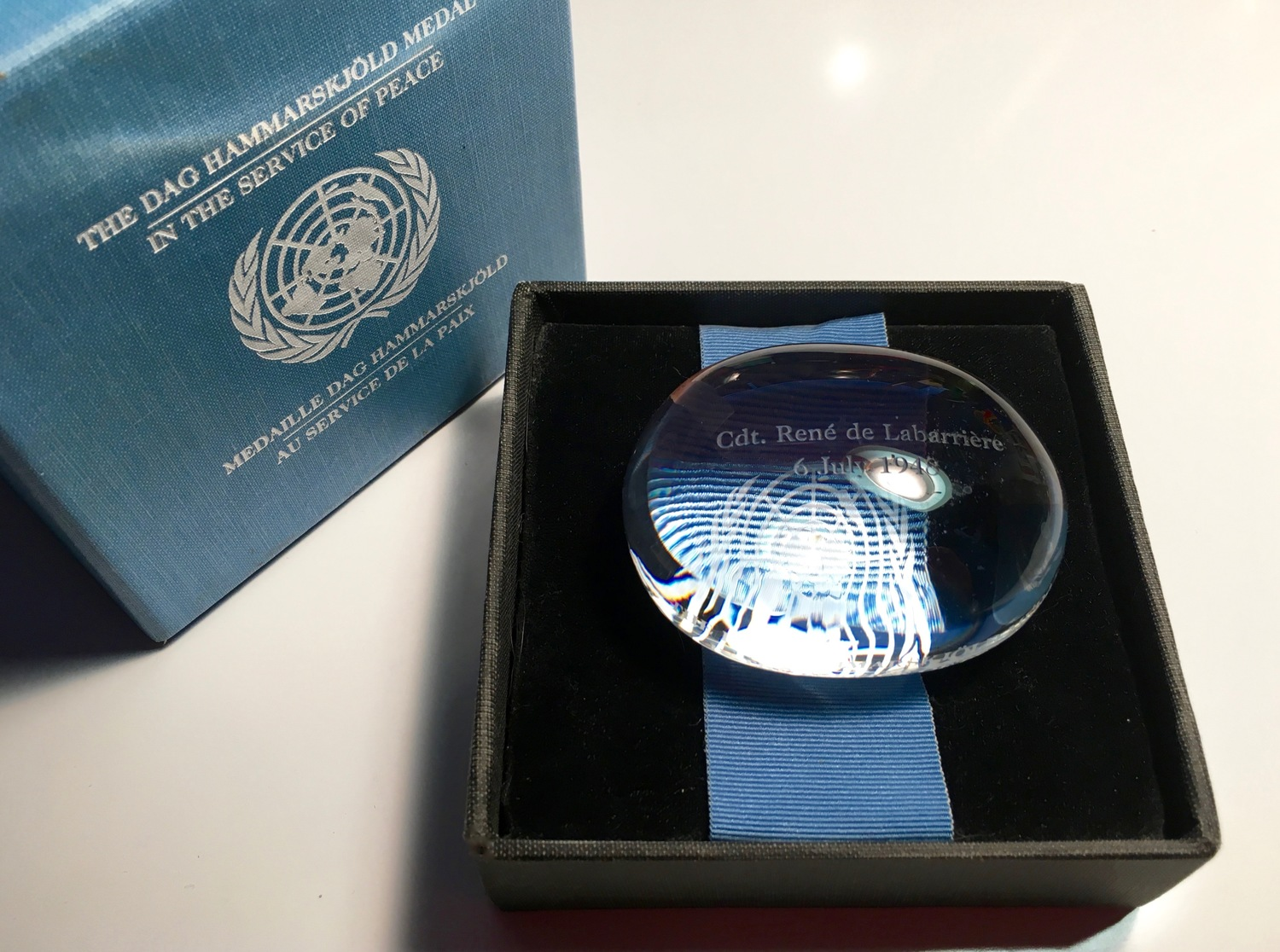
- 30 May 2025
In News:
Two Indian peacekeepers—Brigadier General Amitabh Jha (UNDOF) and Havildar Sanjay Singh (MONUSCO)—are being posthumously awarded the Dag Hammarskjöld Medal by the United Nations. Their sacrifice will be honoured at the U.N. Headquarters during the International Day of U.N. Peacekeepers on May 29, 2025.
Overview:
- Instituted: 1997
- Purpose: Posthumous honour to U.N. peacekeepers who die in service under U.N. authority.
- Awarded on: Peacekeepers' Day (May 29) annually.
- Named after: Dag Hammarskjöld, the 2nd U.N. Secretary-General, who died in a 1961 plane crash during a peace mission in Congo.
- First award (1998): Dag Hammarskjöld and Commandant René de Labarrière (first peacekeeper to die in a U.N. mission, 1948).
Other UN Peacekeeping Awards
- Captain Mbaye Diagne Medal for Exceptional Courage: Recognizes U.N. personnel displaying exceptional bravery.
- UN Military Gender Advocate of the Year Award: Recognizes peacekeepers promoting gender equality under UNSC Resolution 1325.
- 2023 recipient: Major Radhika Sen (India, MONUSCO).
- 2024 recipients: Sqn. Ldr. Sharon Syme (Ghana) and Superintendent Zainab Gbla (Sierra Leone), both serving in UNISFA.
India’s Contribution to UN Peacekeeping
- Total personnel deployed (2025): Over 5,300 Indian troops in missions in: Abyei, Central African Republic, DR Congo, Lebanon, Somalia, South Sudan, and Western Sahara.
- Historical role:
- Since 1950s, India has contributed over 290,000 personnel to 50+ peacekeeping missions.
- India is among the top four contributors of uniformed personnel.
- Engagement includes training, capacity building, and technology support for U.N. missions.
UN Peacekeeping: Global Overview
- Established: 1948 (First mission: United Nations Truce Supervision Organization in the Middle East).
- Cumulative personnel served: Over 2 million in 71 operations.
- Current strength (2025): Around 68,000 personnel from 119 countries in 11 missions across Africa, Asia, Europe, and the Middle East.
- Peacekeepers who have died since 1948: Over 4,400.
Theme 2025: ‘The Future of Peacekeeping’
- Linked to: Pact for the Future adopted in 2024 by global leaders.
- Aim: To reform peacekeeping for modern challenges.
- UN Secretary-General António Guterres emphasized the need for a peacekeeping force ready to face "increasingly complex" global situations.
Stromatolites in India
- 30 May 2025
In News:
600-million-year-old stromatolites in the Himalayas tell the story of an ocean lost and Earth’s first breath.
What are Stromatolites?
Stromatolites are organo-sedimentary structures formed by the entrapment of calcium carbonate precipitates by cyanobacteria (blue-green algae) in shallow marine environments. These layered, dome-shaped mounds represent some of the earliest evidence of life on Earth, with their formation driven by photosynthetic microbial mats.
- Composition: Typically found in limestone, shale, and sandstone.
- Structure: Characterized by laminated layers that may appear flat, dome-shaped, or columnar.
- Habitat (Ancient & Modern): Mostly marine; some ancient forms inhabited freshwater and intertidal zones. Today, living stromatolites survive in limited saline lagoons and bays.
Latest Discovery: Chambaghat, Himachal Pradesh
A major stromatolite outcrop, dating back 600 million years, was recently found in Chambaghat, Solan district, Himachal Pradesh. These structures lie within the Krol Group of sedimentary rocks — a part of the ancient Tethys Sea that existed before the Indian plate collided with Eurasia.
- Elevation: Found at 5,000–6,000 ft above sea level, showcasing tectonic uplift.
- Age Significance: Though not the oldest globally or in India, these are among the younger but well-preserved stromatolites, possibly from the Precambrian-Cambrian boundary (~543–548 million years ago).
Scientific Importance
- Geological Record: Stromatolites document Earth's atmospheric shift from a greenhouse gas-rich to an oxygen-rich environment — a transformation driven by photosynthetic cyanobacteria.
- The Great Oxidation Event (GOE): Occurred ~2.4 billion years ago, when oxygen produced by cyanobacteria began accumulating in the atmosphere, enabling the evolution of multicellular life.
- Tectonic History: Their presence in the Himalayas illustrates the story of the Gondwana supercontinent, India’s northward drift, and the closure of the Tethys Sea.
Global and Indian Context
- Oldest Stromatolites (Global): ~3.6 billion years old from Western Australia.
- Oldest in India: ~2.5 billion years old in the Dharwar Supergroup, Karnataka.
Prominent Stromatolite Sites in India:
Region Geological Feature
Chitrakoot, Uttar Pradesh Columnar stromatolites in Vindhyan limestones
Morni Hills, Haryana Preserved stromatolites in dolomite
Mussoorie & Nainital, Uttarakhand Precambrian marine stromatolites in Krol Belt
Jaisalmer Fossil Park, Rajasthan Protected Mesozoic marine fossil site
Dharwar Supergroup, Karnataka Neoarchean stromatolites (~2.6 billion years old)
Bhima Basin, Karnataka Precambrian stromatolites in shallow marine limestones
Preservation and Geoheritage
Geologists and experts advocate for declaring Chambaghat as a Geoheritage Park, involving local communities and schools to foster awareness. The goal is to integrate science with tourism, conservation, and education.
- Challenge: Many stromatolitic sites across India face neglect or risk from mining and construction, despite their scientific and educational potential.
- Appeal: Proposal for UNESCO Geoheritage status to protect and promote this prehistoric legacy.
Pedicularis rajeshiana
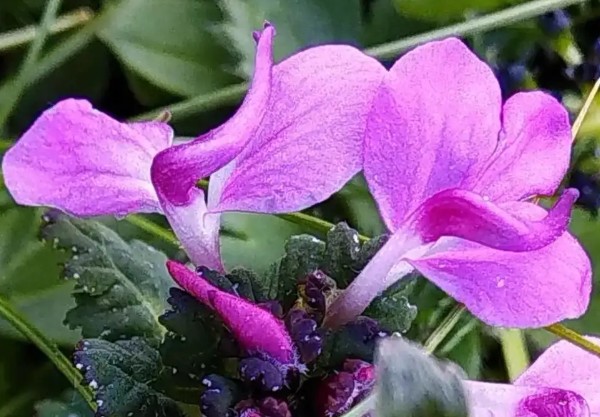
- 30 May 2025
In News:
Researchers from the Botanical Survey of India (BSI), under the Ministry of Environment, Forest and Climate Change (MoEF&CC), have discovered a new plant species — Pedicularis rajeshiana — in the high-altitude regions of Rohtang Pass, Himachal Pradesh.
Key Facts:
Taxonomy and Classification
- Scientific Name: Pedicularis rajeshiana
- Family: Orobanchaceae
- Common Group: Louseworts (Hemiparasitic plants – partially dependent on host plants for nutrients, but also photosynthetic)
- Named by: Botanist Dr. Arti Garg, formerly of BSI Prayagraj, now with BSI Dehradun
- Publication: Officially recorded in the international journal Phytotaxa (Mongolia)
Habitat and Discovery
- Location: Rohtang Pass, Pir Panjal range, Western Himalayas
- Altitude: ~4,390 metres (14,400 feet)
- Habitat: Shaded rocky slopes in scattered patches
- Discovery Project: "Flora of India" initiative by MoEF&CC and BSI
Unique Botanical Characteristics
- Size: Smaller than related species like P. porrecta and P. heydei
- Floral Features:
- Deeply cut lower labium (lip)
- Stamens positioned at three distinct levels inside the flower
- Rare pollen morphology with croton-like surface texture
- Two flowers observed with twin galea (hood-like structures) — a first in the genus, possibly an evolutionary trait to enhance pollination
Ecological Significance
- Endemicity: Many Pedicularis species are habitat-specific and endemic to certain Himalayan regions
- India's Diversity: Home to 83 known species of Pedicularis, with 36 in the western Himalayas
- Conservation Value: The specificity of habitat and rarity suggest potential threat status; conservation is crucial.
India’s First Gene-Edited Sheep

- 30 May 2025
In News:
Sher-e-Kashmir University of Agricultural Sciences and Technology (SKUAST-Kashmir) has successfully developed India’s first gene-edited sheep, marking a significant breakthrough in the field of animal biotechnology.
Key Highlights:
- Institution Involved: Sher-e-Kashmir University of Agricultural Sciences and Technology (SKUAST), Srinagar.
- Technology Used:
- CRISPR-Cas9 gene editing — a precision genome editing tool that won the 2020 Nobel Prize in Chemistry.
- Gene editing was conducted without insertion of foreign DNA, thus the sheep is non-transgenic and differs from traditional GMOs.
- Gene Targeted: The myostatin gene, which regulates muscle growth, was edited to enhance muscle mass.
- Result: Muscle mass increased by 30%, a trait absent in Indian sheep breeds but seen in select European breeds like the Texel.
- Significance:
- Improved meat yield and quality in sheep.
- Potential for disease-resistant and higher-reproduction-rate livestock in the future.
- Supports India’s evolving biotech policy by promoting non-transgenic, gene-edited organisms that are more likely to receive regulatory acceptance.
- Aligns with goals of sustainability and food security by enhancing productivity per animal.
- Regulatory & Safety Aspects:
- Research adhered to international biosafety protocols.
- Sponsored by the Indian Council of Agricultural Research (ICAR).
- Legacy & Research Background:
- Developed after 4 years of dedicated research.
- Led by Prof. Riaz Ahmad Shah, also known for creating India’s first cloned Pashmina goat, Noori, in 2012, and contributing to the world’s first cloned buffalo at NDRI, Karnal.
Implications for the Future:
- Opens doors for precision breeding in livestock to boost India’s animal husbandry sector.
- Strengthens India’s position in advanced genomic research and supports the vision of Atmanirbhar Bharat in biotechnology.
- Awaits comprehensive regulatory framework for gene-edited animals, currently under government consideration.
WMO Climate Forecast 2025–2029
- 30 May 2025
In News:
The World Meteorological Organization (WMO) has released its latest decadal climate forecast (2025–2029), warning of a continued trend of record-breaking global temperatures. This projection raises serious concerns about climate risks, sustainable development, and international climate commitments under the Paris Agreement.
Key Projections:
- Annual Global Temperature Rise: Each year from 2025–2029 is projected to be 1.2°C to 1.9°C above pre-industrial levels (1850–1900).
- Record Heat Likelihood:
- 80% chance that at least one year will surpass 2024, currently the warmest year on record.
- 86% probability that one year will exceed the 1.5°C threshold.
- Five-Year Mean Warming: 70% chance that the 2025–2029 average will be above 1.5°C, a sharp rise from 47% (2024–2028) and 32% (2023–2027).
Note: The Paris Agreement’s 1.5°C limit refers to long-term (20-year) averages, but short-term overshoots are now increasingly probable.
Regional and Thematic Insights:
1. Arctic Amplification: Arctic winters (Nov–Mar) are projected to be 2.4°C warmer than the 1991–2020 average—3.5× faster than the global rate.
2. Sea Ice Decline: Continued sea ice reduction is expected in the Barents Sea, Bering Sea, and Sea of Okhotsk, impacting marine biodiversity and indigenous livelihoods.
3. Precipitation Variability:
- Wetter-than-average conditions likely in:
- Sahel region
- Northern Europe
- Alaska and Northern Siberia
- Drier conditions expected over:
- Amazon Basin
- Parts of South Asia
South Asia may witness generally wet years, though seasonal variability will persist.
Impact and Implications:
- Extreme Weather Events: Increased warming will fuel more intense heatwaves, extreme rainfall, droughts, and floods, stressing both urban systems and agriculture.
- Cryosphere and Ocean Changes:
- Accelerated glacier and sea ice melt will raise sea levels.
- Ocean heating contributes to acidification and marine biodiversity loss.
- Threat to Sustainable Development: Progress on SDGs, particularly food security, water availability, and health, is at risk in vulnerable regions.
Way Forward:
- Revise NDCs at COP30: Strengthen and align Nationally Determined Contributions (NDCs) with the 1.5°C goal.
- Accelerate Clean Energy Transition: Promote renewables, energy efficiency, and net-zero strategies to reduce GHG emissions.
- Adaptation and Resilience: Invest in climate-resilient infrastructure and early warning systems.
- Climate Monitoring & Forecasting: Enhance WMO-led regional forecasts and risk assessment tools.
- Preserve Natural Carbon Sinks: Protect forests, wetlands, and oceans to mitigate atmospheric CO?.
India’s Sharp Decline in Poverty
- 29 May 2025
In News:
Recent Household Consumption Expenditure Surveys (2022–23 and 2023–24) by the National Statistical Office (NSO), alongside a World Bank Poverty & Equity Brief, highlight a historic decline in poverty in India. This achievement is largely attributed to sustained GDP growth and declining inequality.
Key Findings:
Poverty Reduction Trends (2011–12 to 2023–24)
- All-India Poverty Ratio: Fell from 29.5% (2011–12) → 9.5% (2022–23) → 4.9% (2023–24).
- Extreme Poverty (<$2.15/day, PPP): Declined from 16.2% → 2.3% (2011–12 to 2022–23).
- Lower-Middle Income Poverty (<$3.65/day): Declined from 61.8% → 28.1%.
Updated Poverty Lines (Rangarajan Committee Methodology):
Area 2011–12 2022–23 2023–24
Rural ?972 ?1,837 ?1,940
Urban ?1,407 ?2,603 ?2,736
- For a 5-member urban household, the 2023–24 poverty threshold is ?13,680/month.
Factors Driving Poverty Reduction:
- High GDP Growth: Rose from 7.6% (2022–23) to 9.2% (2023–24).
- Moderating Inflation: Consumer Price Index (CPI) inflation dropped from 6.7% to 5.4%, enhancing real incomes. However, food inflation rose to 7.5%, affecting poor households disproportionately.
- Inequality Decline:
- Gini Coefficient fell from 0.310 (2011–12) → 0.282 (2022–23) → 0.253 (2023–24).
- Urban areas saw faster decline in consumption inequality.
Nature and Depth of Poverty:
- Poverty Near the Threshold:
- Over 50% of the poor lie between 75–100% of the poverty line.
- Large share of non-poor lie just above the line (115–125%), making them vulnerable.
- Depth Analysis (Raised Cut-Offs): Even at 125% of the poverty line, poverty fell by 34.2 percentage points (2011–24), showing broad-based gains.
Regional & Structural Challenges:
- Persisting Regional Disparities: States like Bihar, Jharkhand, Odisha still report higher poverty levels.
- Urban Informality & Data Gaps: Recent surveys underrepresent informal workers and migrants, skewing urban poverty estimates.
- Vulnerability to Shocks: Health crises, climate events, or inflation could push the near-poor back into poverty.
- Gaps in Welfare Coverage: Urban poor and migrant populations face limited access to PDS and safety nets.
Policy Imperatives:
- Targeted Cash Transfers: Scale up schemes like PM-GKAY, DBT for LPG, and tailor transfers to those just above the poverty line.
- Strengthen Rural Employment: Enhance MGNREGA funding and integrate climate-resilient jobs.
- Build Urban Safety Nets: Develop a comprehensive urban social protection framework for gig and informal sector workers.
- Education & Nutrition Investments: Bridge human capital gaps via PM POSHAN, Saksham Anganwadi.
- Continuous Poverty Monitoring: Institutionalize annual poverty tracking using real-time and multidimensional indicators.
Menstrual Hygiene in India: Insights from the 2025 Survey
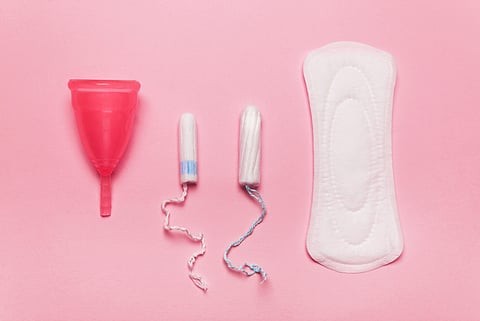
- 29 May 2025
In News:
Menstrual Hygiene Day, observed annually on May 28, raises awareness about safe menstrual practices and their role in ensuring health, dignity, and equality for women and girls. Ahead of the day, the everteen Menstrual Hygiene Survey 2025 has highlighted growing concerns around misinformation, stigma, and access to menstrual products in India.
Key Findings from the Survey:
- Social Media & Misinformation:
- 71.6% of women find social media informative on menstruation.
- However, only 11.5% trust it during emergencies.
- 1 in 4 women reported that misinformation online negatively affected their menstrual health.
- Examples of Misinformation:
- Harmful remedies such as applying menstrual blood for skincare, or drinking coffee/lemonade for cramps.
- Myths like avoiding exercise, temple visits, or not washing hair during periods.
- Misleading claims linking light flow to infertility or tampon use to anatomical changes.
- Menstrual Pain & Remedies:
- 82.7% of respondents experience menstrual pain.
- Only 14.2% use painkillers; 41.5% use no remedy at all.
- Cramps roll-ons used by just 5.5%.
- Menstrual Products Usage:
- 87.8% use sanitary pads (most common).
- Disposable period panties (5.7%) are more popular than menstrual cups (4.7%) or tampons (1.6%).
- 35.4% purchase menstrual products online citing convenience and discounts.
- A significant number of offline buyers report discomfort at physical stores.
- Online Discourse:
- 34% of women shared personal menstrual experiences online.
- Yet, 37.6% feared privacy breaches and 11.4% feared social judgment.
Menstrual Hygiene: Broader Context
- Definition: Safe and hygienic management of menstruation, including the use of clean products, proper disposal, access to sanitation, and health education.
- Global Concern: According to UNICEF, 500 million women globally lack access to adequate menstrual hygiene facilities.
Challenges in India:
- Digital Myths & Stigma: Despite digital access, online spaces are rife with misinformation and taboo-laden content.
- Access Inequality: Significant urban-rural divide in menstrual health services, infrastructure, and product availability.
- Awareness Gaps: Cultural silence and lack of comprehensive health education still persist.
Policy Interventions & Governance:
- Relevant Government Initiatives:
- SUVIDHA Scheme: Affordable biodegradable sanitary napkins at Jan Aushadhi Kendras.
- Swachh Bharat Mission: Incorporates Menstrual Hygiene Management (MHM) into sanitation programs.
- Global Frameworks: Sustainable Development Goal (SDG) 6 – Right to clean water and sanitation, encompassing menstrual hygiene.
Modified Interest Subvention Scheme (MISS) – FY 2025–26
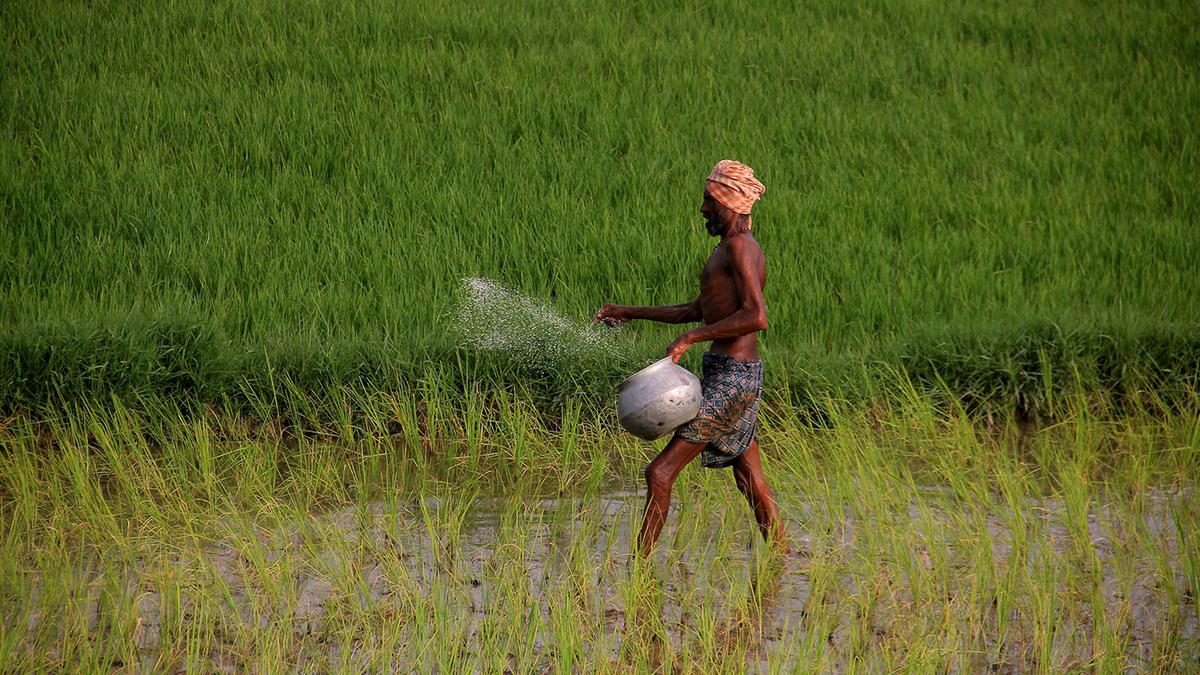
- 29 May 2025
In News:
The Union Cabinet has approved the continuation of the Interest Subvention (IS) component under the Modified Interest Subvention Scheme (MISS) for the financial year 2025–26, retaining the existing structure and interest rates.
About the Scheme:
- Type: Central Sector Scheme
- Objective: To provide short-term agricultural credit to farmers at affordable interest rates through Kisan Credit Cards (KCC).
Key Features:
- Loan Coverage:
- Short-term crop loans up to ?3 lakh per farmer through KCC.
- For loans exclusively for animal husbandry or fisheries, the benefit applies up to ?2 lakh.
- Interest Rates:
- Base interest rate: 7%
- 1.5% interest subvention to lending institutions
- 3% Prompt Repayment Incentive (PRI) for timely repayment
- Effective interest rate for prompt payers: 4%
- Implementing & Monitoring Agencies:
- Reserve Bank of India (RBI)
- National Bank for Agriculture and Rural Development (NABARD)
- Operated via Public Sector Banks, Regional Rural Banks, Cooperative Banks, and Private Banks in rural/semi-urban areas.
Recent Updates and Rationale:
- No structural changes have been introduced in the scheme for FY 2025–26.
- The scheme continues amidst rising lending costs, with stable repo rates and MCLR trends.
- It ensures credit access for small and marginal farmers, critical for financial inclusion and agricultural productivity.
Impact on Agricultural Credit:
- KCC Accounts: Over 7.75 crore active accounts across India.
- Institutional Credit Growth:
- Disbursement via KCC increased from ?4.26 lakh crore (2014) to ?10.05 lakh crore (Dec 2024).
- Total agricultural credit rose from ?7.3 lakh crore (FY 2013–14) to ?25.49 lakh crore (FY 2023–24).
- Digital Reform: Kisan Rin Portal (KRP) launched in August 2023 has improved transparency and efficiency in claim processing.
Significance:
- Helps ensure timely and affordable institutional credit to the farming sector.
- Supports the government's goal of doubling farmers’ income.
- Strengthens the rural credit delivery system and promotes inclusive growth in agriculture.
Madden-Julian Oscillation (MJO)
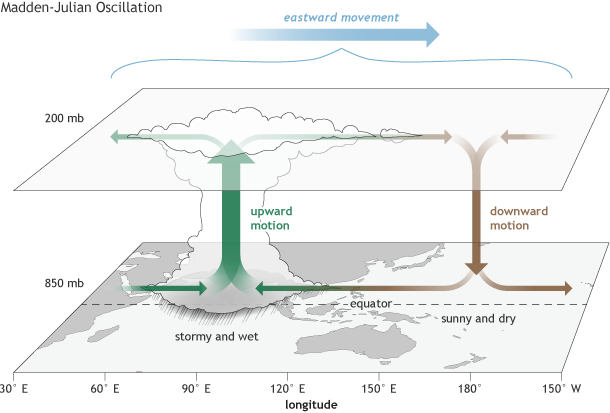
- 29 May 2025
In News:
In 2025, the early onset of the southwest monsoon in Kerala (May 24) and Mumbai (May 26—the earliest on record) was significantly influenced by the Madden-Julian Oscillation (MJO), as reported by the India Meteorological Department (IMD).
What is the MJO?
- The Madden-Julian Oscillation (MJO) is a large-scale atmospheric phenomenon observed in the tropical belt (30°N to 30°S).
- It is an eastward-moving disturbance involving winds, clouds, pressure, and rainfall that circles the globe every 30 to 60 days (occasionally up to 90 days).
- Identified in 1971 by Roland Madden and Paul Julian, it differs from ENSO (El Niño–Southern Oscillation) in being intra-seasonal and transient.
Phases of MJO:
- Enhanced Convective Phase:
- Associated with increased cloudiness, low pressure, and above-normal rainfall.
- Characterized by rising air and moisture convergence.
- Suppressed Convective Phase:
- Brings clearer skies and reduced rainfall due to subsiding dry air.
- These phases shift eastward and influence weather globally, including India.
Formation and Movement:
- Triggered by surface wind convergence that causes upward motion, cloud formation, and upper-level wind divergence.
- Travels at 4–8 m/s, completing a global circuit roughly every 30–60 days.
MJO’s Impact on Indian Monsoon:
- MJO in active phase over the Indian Ocean can:
- Trigger early monsoon onset, as seen in 2024 and 2025.
- Enhance cyclogenesis and monsoon depressions.
- Improve intra-seasonal rainfall variability.
- May 2025 Event:
- The MJO was in Phase 4 with amplitude >1, indicating strong activity conducive to rainfall.
- This condition, along with favorable local and oceanic factors, supported early monsoon advancement in India.
Global Influence of MJO:
- Cyclone Modulation: Alters frequency and intensity of tropical cyclones.
- Weather Extremes: Affects jet streams, triggering cold surges, heatwaves, or floods in mid-latitudes (e.g., U.S., Europe, Australia).
- Interaction with ENSO: While not always directly linked, MJO can amplify or be influenced by El Niño conditions.
Dark Patterns and India’s Regulatory Response
- 29 May 2025
In News:
The Ministry of Consumer Affairs, Food, and Public Distribution has initiated a robust crackdown on Dark Patterns—deceptive design practices used on digital platforms to manipulate consumer behavior. A recent high-level stakeholder meeting in Delhi, chaired by Union Minister Prahlad Joshi, brought together representatives from major e-commerce platforms like Amazon, Flipkart, Zomato, and Ola, along with consumer organizations and law institutions, to address the growing concern.
What are Dark Patterns?
Dark Patterns are user interface designs that intentionally mislead or coerce consumers into making decisions they would not have otherwise made. These manipulative tactics exploit psychological principles and cognitive biases to serve the commercial interests of platforms—often at the cost of consumer autonomy.
Types of Dark Patterns Identified by the Government:
The Department of Consumer Affairs has officially recognized 13 types of dark patterns in its November 2023 guidelines. Prominent among them are:
- False Urgency: Creating artificial time pressure (e.g., “Only 1 seat left!”).
- Basket Sneaking: Adding items to the cart without user consent.
- Confirm Shaming: Using guilt-driven language to influence decisions.
- Subscription Trap: Making subscription easy but cancellation difficult.
- Interface Interference: Hiding crucial information or options.
- Bait and Switch: Advertising one offer and switching to another.
- Hidden Costs: Revealing extra charges only at checkout.
- Forced Action: Making users complete unrelated tasks to proceed.
- Disguised Ads, Trick Questions, Nagging, SAAS Billing Abuse, and Rogue Malware Links are other examples.
These practices have been found across multiple digital sectors including e-commerce, travel, OTT platforms, edtech, online banking, and quick commerce.
Consumer Impact and Rising Complaints:
The National Consumer Helpline has witnessed a significant increase in grievances related to dark patterns. Platforms are accused of eroding consumer trust, causing financial harm, breaching privacy, and distorting fair market practices.
According to LocalCircles, based on a survey conducted across 392 districts with feedback from 2.30 lakh consumers, the worst offenders include edtech, airline, and taxi app services. Notably, companies like Uber and Rapido were recently issued notices by the Central Consumer Protection Authority (CCPA) for coercing users into paying tips in advance.
Regulatory Measures in India:
- Consumer Protection Act, 2019: While it prohibits unfair trade practices, it lacks explicit provisions targeting dark patterns, making enforcement challenging.
- 2023 Guidelines on Dark Patterns: Released by the Department of Consumer Affairs, these guidelines define deceptive interfaces as violations of consumer rights and misleading advertisements.
- Self-Audit Mandate: E-commerce companies have been instructed to conduct internal audits and eliminate dark patterns from their platforms.
- Proposed Joint Working Group: A mechanism is being considered to increase industry awareness and enforce compliance.
- Voluntary and Legal Enforcement: The government has urged digital firms to integrate the guidelines into internal policies and consumer grievance redressal systems.
Panchayat Advancement Index (PAI) 2.0
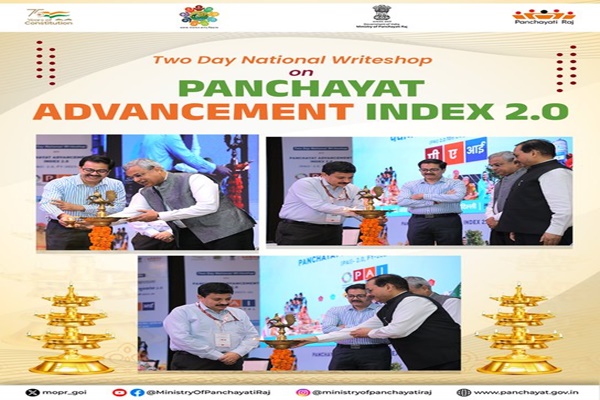
- 28 May 2025
In News:
The Ministry of Panchayati Raj recently held a two-day national write-shop in New Delhi to roll out the Panchayat Advancement Index (PAI) Version 2.0 for the financial year 2023–24. This updated version marks a significant stride toward enabling evidence-based, participatory local governance in India.
What is Panchayat Advancement Index (PAI)?
The PAI is a multi-domain, multi-sectoral index designed to assess the developmental progress, performance, and governance efficiency of Gram Panchayats. It aligns with the Localization of Sustainable Development Goals (LSDGs) and India's broader commitment to the 2030 SDG Agenda.
Key Features of PAI 2.0
- Framework: Based on 435 unique local indicators (331 mandatory, 104 optional), drawn from 566 data points across 9 LSDG themes, aligned with the National Indicator Framework (NIF) of the Ministry of Statistics and Programme Implementation (MoSPI).
- Purpose:
- Measures holistic development and well-being at the grassroots level.
- Helps identify developmental gaps and supports data-driven planning for Panchayats.
- Encourages bottom-up planning and governance.
- Performance Classification:
- Achiever: 90 and above
- Front Runner: 75 to <90
- Performer: 60 to <75
- Aspirant: 40 to <60
- Beginner: Below 40
Evolution from PAI 1.0 to 2.0
- PAI 1.0 established the baseline, covering 2.16 lakh Gram Panchayats across 29 States/UTs.
- PAI 2.0 offers enhanced functionality, efficiency, and user-friendliness, with refined indicators and improved data usability, while maintaining thematic comprehensiveness.
Recent Developments
- Launch of the PAI 2.0 Portal and a comprehensive PAI 2.0 Booklet for FY 2023–24 to guide implementation.
- According to the Ministry, PAI 2.0 now contains over 100 indicators that collectively offer a robust picture of social and economic development at the Panchayat level.
Jinchuanloong niedu
- 28 May 2025
In News:
A newly discovered genus and species of sauropod dinosaur, Jinchuanloong niedu, has been identified from fossil remains found in the Xinhe Formation near Jinchang city in Gansu Province, northwestern China. This discovery adds to the growing diversity of early-diverging sauropods from the Middle Jurassic period, dating back approximately 165 million years.
About Jinchuanloong niedu
- Jinchuanloong niedu belongs to the group Eusauropoda, which comprises early-diverging, strictly herbivorous, long-necked, quadrupedal dinosaurs.
- The fossil specimen includes a nearly complete skull with mandible, five cervical vertebrae, and 29 articulated caudal vertebrae.
- The skull measures approximately 31 cm in length and 12.5 cm in height. Notably, complete skulls are rare in non-neosauropod eusauropods due to their fragile nature.
- The skull is well-preserved, although slightly deformed due to compression. Most cranial sutures remain distinctly visible, aiding paleontological study.
Paleontological Significance
- This species is the earliest sauropod identified from Gansu Province, enriching the diversity of known early-diverging sauropods in East Asia.
- The discovery contributes valuable insights into sauropod evolution in northwest China, particularly during the Middle Jurassic.
- The presence of Jinchuanloong niedu helps trace lineage continuity in the aftermath of a global warming event during the late Early Jurassic, which led to the extinction of other sauropod groups, leaving only eusauropods.
Eusauropoda and Sauropod Evolution
- Sauropods, which existed from the Early Jurassic to the Late Cretaceous, were the largest land animals to have ever lived and were found on all continents.
- Characterized by massive size, long necks and tails, and a herbivorous diet, sauropods include both neosauropods and non-neosauropods.
- During the Middle and Late Jurassic, non-neosauropod eusauropods like Shunosaurus, Omeisaurus, and Mamenchisaurus-like taxa became dominant.
Kumbakonam Vetrilai (Betel Leaf)
- 28 May 2025
In News:
Kumbakonam Vetrilai, a traditional betel (paan) leaf variety cultivated in Tamil Nadu, was recently granted the Geographical Indication (GI) tag by the Government of India. This recognition was published in the Government Gazette in November 2024 and officially announced in April 2025, taking Tamil Nadu’s total GI products to 62.
Geographical and Agricultural Context
Kumbakonam Vetrilai is predominantly grown in the Cauvery river basin in Thanjavur district, covering areas like Kumbakonam, Ayyampettai, Swamimalai, Rajagiri, Thiruvaiyaru, and Papanasam. The region's fertile soil gives the leaves a distinct taste and aroma.
The oblong, heart-shaped leaves, ranging from dark to light green, are known for their pungent flavour and are a staple in South Asian households, used primarily in preparing paan—a post-meal chew with cultural and ceremonial value.
Cultivation and Harvest
The cultivation cycle begins with planting during March–May and August–October. Banana suckers are commonly used to provide shade for the vines. The first leaves, called kolundhu vetrilai, appear 20–25 days after planting.
- Maaruvethalai (1st year harvest): Yields larger leaves with a shelf life of 6–7 days and fetches premium market prices.
- Kelavethalai and Kattavethalai (2nd and 3rd year harvests): Smaller leaves with reduced yield.
The cultivation is labour- and capital-intensive, with most farmers operating on less than one acre. Adverse weather, soil issues, and labour shortages frequently impact profitability.
Cultural and Medicinal Value
Apart from its ritual and culinary use, betel leaf is valued for medicinal properties. Rich in antioxidants and chavicol (an anti-inflammatory compound), it aids digestion and is believed to help manage oxidative stress and diabetes-related conditions.
Economic and Export Potential
The leaves are sold at Rs. 80–180 per 100 leaves and are also exported. However, only about 10 out of 100 days are considered profitable due to market and climatic fluctuations.
GI Tag Benefits and Challenges
The GI tag:
- Confirms the authenticity and regional uniqueness of Kumbakonam Vetrilai.
- Helps curb misuse of the name and ensures only genuine, high-quality products are marketed.
- Boosts export potential and preserves agro-cultural heritage.
Despite this recognition, many farmers and sellers remain unaware of the GI tag. As per Sanjai Gandhi, the IP attorney behind the GI application, there's a pressing need for awareness, capacity-building, and marketing support to help stakeholders leverage the tag effectively.
Efforts are underway through outreach programs and school and college awareness initiatives. This GI tag is also notable as Thanjavur’s first agricultural GI recognition, adding to the region’s rich cultural profile.
National Apprenticeship Promotion and Training Schemes
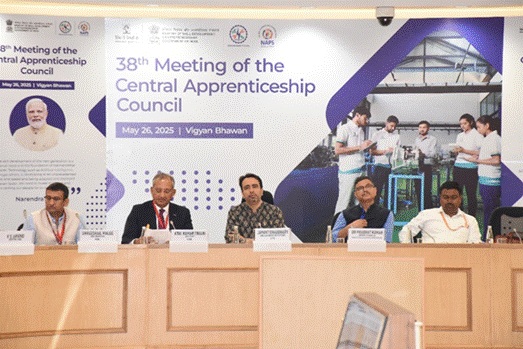
- 28 May 2025
In News:
Recently, the 38th Meeting of the Central Apprenticeship Council (CAC), chaired by the Minister of State (Independent Charge) for the Ministry of Skill Development and Entrepreneurship (MSDE), recommended a 36% increase in stipends under two key skilling initiatives—National Apprenticeship Promotion Scheme (NAPS) and National Apprenticeship Training Scheme (NATS). This move aims to enhance apprenticeship attractiveness, reduce dropout rates, and improve youth employability across India.
About NAPS (Launched: 19 August 2016)
- Objective: To build industry-relevant skilled manpower by promoting on-the-job training and bridging the gap between education and employment.
- Administered by: Ministry of Skill Development and Entrepreneurship (MSDE).
- Key Features:
- Provides financial support to establishments for engaging apprentices.
- Encourages MSME participation and focuses on aspirational districts and the North-East.
- Offers partial stipend reimbursement under the Apprentices Act, 1961.
- Apprentices receive a certificate from NAPS, enhancing employability.
- Over 43.47 lakh apprentices engaged across 36 States/UTs till May 2025.
- Female participation reached 20%, with efforts to boost inclusion.
About NATS
- Target Group: Graduates, Diploma holders, and Vocational certificate holders.
- Provisions:
- Offers 6–12 months of practical, hands-on training.
- Employers receive 50% stipend reimbursement.
- Apprentices are issued a Government of India Certificate of Proficiency, valid across employment exchanges.
- FY 2024–25 Stats: Over 5.23 lakh apprentices enrolled.
Key Reforms Recommended by CAC (2025)
- Stipend Enhancement:
- Proposed increase from ?5,000–?9,000 to ?6,800–?12,300.
- To be adjusted biennially based on Consumer Price Index (CPI).
- Inclusive Skilling Framework:
- Definition of “Person with Benchmark Disability” to be added under the Apprenticeship Rules.
- Trades must indicate suitability for PwBDs with reserved training slots.
- Curricular Integration:
- Push for Degree Apprenticeships and Apprenticeship Embedded Degree Programmes (AEDP).
- Definitions added for "Institution", "UGC", and "Contractual Staff".
- Flexible Training Modes: Employers may provide Basic and Practical Training through online, virtual, or blended modes, adhering to standard curricula.
- Decentralized Administration: Proposal to establish Regional Boards to improve scheme outreach and governance.
- Sectoral Expansion:
- Adoption of NIC Code 2008 to replace outdated 1987 list.
- Brings emerging sectors like IT, software, telecom, biotech, and renewable energy under apprenticeship coverage.
- Operational Improvements:
- Align CTS (Craftsmen Training Scheme) courses with apprenticeship notification timelines.
- Consideration of location-based stipend rationalization based on cost of living.
- Proposal for insurance coverage for apprentices during contract periods.
Governance and Stakeholder Involvement
The Central Apprenticeship Council includes representatives from:
- Ministries: Education, Labour, MSME, Railways, Textiles.
- Industry: BHEL, Indian Oil, Tata, Maruti, Reliance.
- Institutions: NSDC, UGC, AICTE.
- State advisors and domain experts from labour and education fields.
Semi-Transparent Perovskite Solar Cell Technology
- 28 May 2025
In News:
Researchers at IIT Bombay have developed an advanced semi-transparent perovskite solar cell (PSC) layered over a traditional silicon solar cell. This results in a 4-terminal (4T) tandem solar cell that significantly boosts power conversion efficiency (PCE) to ~30%, compared to the current average of ~20% in conventional solar panels.
Key Features and Technology
- Structure: Tandem architecture using a bottom silicon sub-cell and a top layer of indigenously developed halide perovskite semiconductor.
- Material Efficiency: Halide perovskite is one of the most efficient light-absorbing materials and can be locally produced using available chemical resources.
- Cost & Efficiency Gains:
- Potential to reduce solar power cost to ?1/kWh, down from ?2.5–4/kWh.
- Offers 25–30% more efficiency compared to standard solar panels.
- Stability Improvements: Previously, PSCs degraded quickly. The new configuration extends lifespan up to 10 years, enhancing durability under heat and low-light conditions.
Strategic Significance for India
- Indigenous Manufacturing: Reduces dependence on imported raw materials, especially those dominated by China.
- Commercialization Plan:
- Maharashtra government and MAHAGENCO exploring large-scale implementation.
- ART-PV India Pvt. Ltd., a start-up from IIT Bombay's SINE, aims to deliver a commercial wafer-size solution by December 2027 using indigenous equipment.
- Applications:
- Rooftop solar installations
- Building-integrated photovoltaics (BIPV)
- Vehicle-integrated photovoltaics (VIPV)
Clean Energy Linkage: IIT Bombay is also working with the Maharashtra government to develop green hydrogen solutions. The PSC’s high open-circuit voltage makes it suitable for solar-to-hydrogen (STH) applications, offering performance comparable to costly compound semiconductors but at lower cost and with locally accessible materials.
Alicella gigantea
- 27 May 2025
In News:
Rare giant shrimp is more widespread than previously believed; new findings reveal.
About the Species:
- Alicella gigantea is a giant deep-sea amphipod crustacean, growing up to 34 cm in length, making it one of the largest known amphipods.
- Amphipods are shrimp-like organisms; over 10,000 species are known globally, inhabiting a wide range of aquatic environments.
Habitat and Depth Range:
- Inhabits the abyssal (3,000–6,000 m) and hadal zones (>6,000 m) of the ocean.
- Notable sightings include:
- A 28 cm specimen observed at 5,304 m in the North Pacific.
- Captures from 6,746 m depth in the Murray Fracture Zone (North Pacific).
Global Distribution:
- Contrary to earlier beliefs, A. gigantea is not rare but is among the most widely distributed deep-sea species.
- Recent analysis compiled 195 records from 75 locations across the Pacific, Atlantic, and Indian Oceans, covering 15 different seafloor features.
- Found in 59% of the world’s oceans.
- The Pacific Ocean is its most significant habitat, with 75% of the seafloor in its suitable depth range.
Genetic Insights:
- Genetic analyses (16S, COI, 28S genes) show low genetic divergence across populations.
- This suggests A. gigantea represents a single, globally distributed species with strong genetic conservation.
- A shared haplotype network across regions indicates minimal genetic differentiation, supporting global connectivity among populations.
Conservation and Research Significance:
- Despite its wide range, A. gigantea remains poorly understood, particularly in terms of population size, ecology, and evolutionary history.
- Only seven studies have sequenced its DNA to date.
- The findings are a significant step toward understanding deep-sea biodiversity, biogeography, and conservation priorities in abyssal ecosystems.
RBI Dividend Transfer to Government (FY 2024–25)
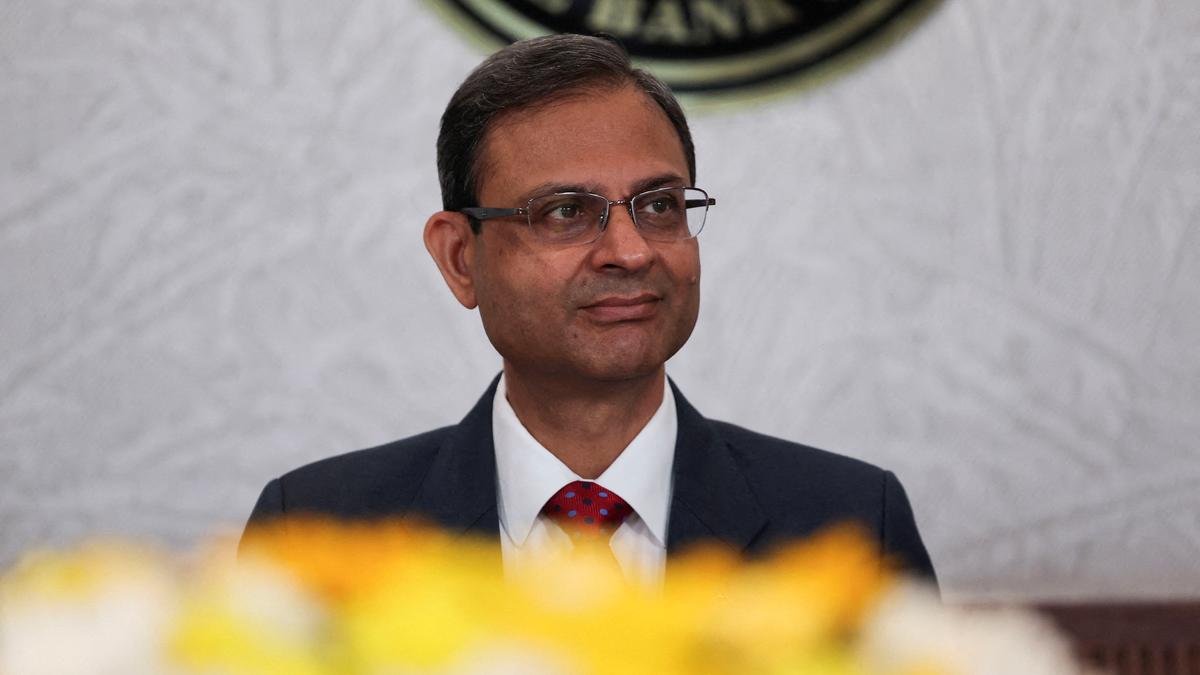
- 27 May 2025
In News:
- The Reserve Bank of India (RBI) has approved a record dividend transfer of ?2.69 lakh crore to the Government of India for FY 2024–25.
- This amount is 27% higher than the ?2.10 lakh crore transferred in the previous year (2023–24).
- The transfer follows the Revised Economic Capital Framework (ECF), approved on May 15, 2025.
What is a Dividend in Public Finance?
- A dividend is the non-tax revenue received by the government as the sole shareholder of the RBI.
- It helps bridge the fiscal deficit.
- RBI dividend distribution is governed by the Reserve Bank of India Act, 1934.
- Unlike corporate dividends that require shareholder approval, RBI transfers are governed by policy mechanisms set by the Central Board.
Economic Capital Framework (ECF) and Risk Buffer
- The Contingent Risk Buffer (CRB) has been raised to 7.5% of the RBI’s balance sheet for FY 2024–25.
- Earlier CRB levels:
- 5.5% (2018–22)
- 6% (2022–23)
- 6.5% (2023–24)
- The CRB helps ensure the RBI maintains sufficient capital to absorb financial shocks.
Reasons for Higher Surplus in 2024–25
- Robust foreign exchange (forex) sales, especially in January 2025, with RBI being the top seller among Asian central banks.
- Increased interest income from government securities and foreign investments.
- Gains from forex transactions during high market volatility.
- Forex reserves had peaked at $704 billion in September 2024, from which large volumes of dollars were sold to stabilise the rupee.
Implications for the Union Budget 2025–26
- The Budget had projected ?2.56 lakh crore as dividend income from RBI and PSUs; the actual RBI dividend itself exceeds this estimate.
- Experts expect the fiscal deficit to reduce by 20 basis points (bps) from the budgeted 4.4% to ~4.2% of GDP.
- The surplus provides a non-tax revenue cushion, helping offset shortfalls in tax or disinvestment receipts and manage additional spending.
Expert Views
- Surplus driven by prudent RBI policy, forex gains, and high interest income. CRB increase reduced the possible surplus, otherwise it could have exceeded ?3.5 lakh crore.
- The surplus equals 0.4–0.5 trillion (?40,000–?50,000 crore) or 11–14 bps of GDP, offering fiscal flexibility.
- Market expected ?3 lakh crore; disappointment due to higher risk buffer provisioning.
Massive Solar Eruption: The ‘Bird-Wing’ Event
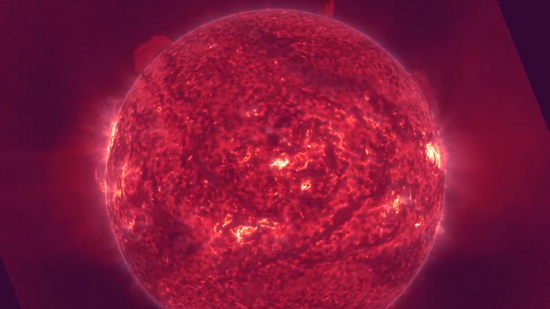
- 27 May 2025
In News:
In May 2025, astronomers observed a dramatic solar eruption, dubbed the “Bird-Wing” event, due to its unique wing-like plasma structure. Originating from the Sun’s northern hemisphere, the eruption stretched over 1 million kilometers—more than twice the Earth-Moon distance.
Key Components of the Event
- Solar Flare:
- A sudden, intense burst of electromagnetic radiation caused by magnetic field realignment on the Sun.
- Classified from A to X (increasing order of X-ray brightness).
- Travels at light speed, reaching Earth in about 8 minutes.
- Can disrupt radio communication and GPS systems by affecting the ionosphere.
- Coronal Mass Ejection (CME):
- A massive release of charged solar plasma and magnetic fields into space.
- Travels at 250–3000 km/s, reaching Earth in 18 hours to 3 days.
- Can cause geomagnetic storms, impacting power grids, satellites, navigation, and inducing auroras.
The “Bird-Wing” event involved both phenomena, but Earth narrowly avoided a direct hit, experiencing only a glancing blow. The impact was minimal and did not cause significant technological disruptions.
Associated Geomagnetic Effects
- A filament eruption, distinct from solar flares, was responsible for the minor geomagnetic activity observed. These are cooler plasma structures held by magnetic fields and appear as dark strands on solar imagery. When destabilized, they erupt and emit charged particles.
- Northern Lights (Aurora Borealis) were expected to be visible over parts of the UK, particularly Scotland, as the trailing edge of the CME brushed past Earth.
Space Weather Risks from Solar Storms
According to the European Space Agency (ESA) and NASA:
- Solar flares can disrupt radio signals and satellite communication.
- Solar particles, including high-energy protons, may arrive hours later, posing risks to astronauts and electronics.
- Geomagnetic storms can:
- Disturb Earth's magnetic field.
- Affect power lines, pipelines, and satellites.
- Expand the upper atmosphere, increasing drag on low-orbit satellites, potentially altering their trajectory.
- Temporarily reduce the number of cosmic rays reaching Earth by deflecting them.
Sagarmatha Sambaad 2025
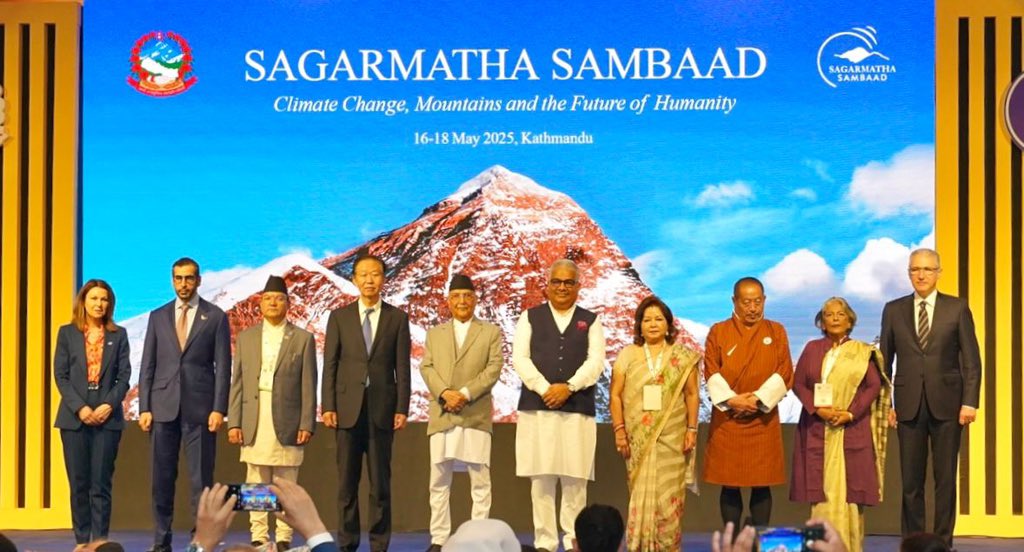
- 27 May 2025
In News:
Union Environment Minister Shri Bhupender Yadav represented India at the 1st Sagarmatha Sambaad in Kathmandu, Nepal, a high-level biennial global dialogue convened under the theme “Climate Change, Mountains, and the Future of Humanity.”
The forum, held during the International Year of Glaciers’ Preservation 2025, focused on mountain ecosystems, climate resilience, and transboundary conservation.
India’s Key Proposals and Commitments
Reaffirmed India’s climate leadership and proposed a five-point call for global action to protect mountain ecosystems:
- Enhanced Scientific Cooperation: Promote joint research on cryospheric changes, biodiversity, and hydrological cycles.
- Building Climate Resilience: Develop early warning systems for Glacial Lake Outburst Floods (GLOFs) and invest in climate-resilient infrastructure in mountainous areas.
- Empowering Mountain Communities: Center policies on local welfare, integrate traditional ecological knowledge, and promote green livelihoods such as eco-tourism.
- Providing Green Finance: Ensure adequate and predictable climate finance for adaptation and mitigation in mountain nations, in line with the Paris Agreement.
- Recognizing Mountain Perspectives: Integrate mountain-specific issues into global climate negotiations and sustainable development agendas.
India’s Initiatives and Regional Cooperation
India highlighted the ecological value of the Himalayas and called for enhanced transboundary conservation among Himalayan nations under the International Big Cats Alliance. This alliance promotes joint protection of species like snow leopards, tigers, and leopards.
- Under Project Snow Leopard, India conducted its first comprehensive snow leopard assessment (2019–2023), recording 718 snow leopards, comprising 10–15% of the global population.
Significance of the Himalayan Ecosystem
- Hydrological Role: The Himalayas are the "Water Towers of Asia", feeding rivers like the Ganga, Brahmaputra, and Indus, and supplying around 1.2 trillion cubic meters of freshwater annually.
- Ecological Richness: A biodiversity hotspot, home to over 10,000 vascular plant species, 979 bird species, and 300 mammals such as the red panda and Himalayan tahr.
- Cultural Importance: Sacred in Hinduism and Buddhism, the Himalayas house pilgrimage sites like Kedarnath, Badrinath, and Mount Kailash.
- Economic Value: Support tourism, agriculture, forestry, and renewable energy. States like Uttarakhand, Assam, and West Bengal derive over 10% of state GDP from tourism.
The Lohit Basin project in Arunachal Pradesh (13,000 MW) exemplifies hydropower potential. - Climate Regulation: The range blocks cold Central Asian winds and influences monsoon patterns, ensuring rainfall for agriculture. Himalayan forests are major carbon sinks, mitigating global warming.
Key Challenges in the Himalayan Region
- Climate Disasters: Rising temperatures and glacier melt cause avalanches, landslides, and cloudbursts. E.g., 2025 Uttarakhand avalanche; 2023 Sikkim GLOF.
- Unsustainable Development: Slope cutting, deforestation, and seismic vulnerability threaten settlements (e.g., Joshimath subsidence linked to infrastructure projects).
- Glacier Retreat:
- Gangotri glacier has retreated over 850 meters in 25 years.
- Hindu Kush glaciers may lose 75% of volume by 2100.
- Biodiversity Loss: Invasive species and habitat loss displace native flora and fauna; 90% of endemic species in Sikkim Himalayas displaced.
- Unregulated Tourism: Littering and plastic waste—92.7% of Himalayan waste is plastic, 72% non-recyclable (2022 audit).
Recommendations for Sustainable Development
- Eco-sensitive Infrastructure: Mandatory Environmental Impact Assessments (EIAs), bioengineering, and electric mobility in high-altitude towns.
- Regulated Tourism: Introduce carrying capacity limits, permit-based entry, and promote low-impact tourism models.
- Glacier Monitoring & Water Management: Use remote sensing and GIS for glacier health; adopt ice stupas, rainwater harvesting, and efficient irrigation.
- Afforestation & Forest Conservation: Launch community-driven forestry projects (e.g., Van Andolan in Uttarakhand) to restore degraded ecosystems.
- Climate Adaptation Strategies: Expand early warning systems for GLOFs; promote climate-resilient crops and agricultural practices.
- Sustainable Livelihoods: Encourage organic farming, herbal industries, and eco-handicrafts to diversify mountain economies.
Bharat Seva Kendra (BSK)
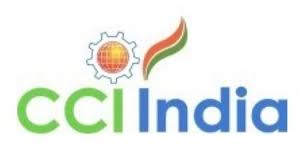
- 27 May 2025
In News:
The Chamber of Commerce and Industry of India (CCI India) has highlighted the role of Bharat Seva Kendra (BSK) in enhancing last-mile service delivery and addressing the urban-rural service gap.
About Bharat Seva Kendra (BSK):
- Launched by: Chamber of Commerce and Industry of India (CCI India).
- Objective: To provide essential government services and welfare benefits directly to rural citizens.
- Nature: A grassroots, nationwide service delivery initiative focused on creating self-reliant rural communities.
Key Features:
- Single-window access to schemes in sectors like healthcare, education, employment, agriculture, financial inclusion, and digital empowerment.
- Digital Inclusion: Modern infrastructure and digital literacy programs to help villagers use e-governance tools effectively.
- Human Network: Backed by a large cadre of 2.5 lakh sarpanches and 6.5 lakh BSK Sarthis, who act as facilitators between government schemes and rural beneficiaries.
- Goal: Reduce bureaucratic delays, enhance transparency, and ensure timely access to welfare schemes.
CCI India’s Role:
- Type: A national-level autonomous business body.
- Functions: Policy advocacy, business facilitation, and supporting domestic and foreign investment.
- Engagement: Represents diverse industries and collaborates with stakeholders including policymakers, industry, and civil society.
Significance for Governance:
- Promotes last-mile delivery of public services.
- Acts as a catalyst for rural digital transformation and inclusive development.
- Enhances administrative efficiency and citizen empowerment in rural India.
Turtle Conservation in Assam’s Temple Ponds

- 26 May 2025
In News:
On World Turtle Day (May 23, 2025), Assam’s Nagshankar Temple was officially declared a model temple for turtle conservation, highlighting the ecological role of temple ponds in preserving India’s turtle biodiversity.
Key Highlights
Nagshankar Temple – A Model for Turtle Conservation
- Location: Sootea town, Biswanath district, ~70 km from Tezpur, Assam.
- Established: Believed to be built in the 4th century AD by King Nagashankar of the Nagakha dynasty.
- Religious Importance: Dedicated to Lord Shiva, but turtles are revered as incarnations of Lord Vishnu.
- Ecological Value: Functions as a micro-wildlife sanctuary — home to 250–300 turtles, along with peacocks, pythons, and deer.
Turtle Conservation Initiatives
Species Conserved:
- Black Softshell Turtle (Nilssonia nigricans) – Critically Endangered
- Indian Softshell Turtle (Nilssonia gangetica)
- Malayan Softshell Turtle
These species thrive in the temple pond, which is fed by the Brahmaputra River basin, offering a suitable natural habitat.
Community & Scientific Collaboration:
- Key Stakeholders:
- Nagshankar Temple Committee
- Turtle Survival Alliance (TSA) India
- Help Earth (NGO)
- Kaziranga National Park & Tiger Reserve
- Assam Forest Department
- Conservation Methods:
- Artificial egg incubation and wild release of hatchlings.
- Dried-fish diet introduced for temple turtles, replacing harmful offerings (e.g., biscuits, puffed rice).
- Capacity-building workshops for forest staff and students to aid in turtle surveys.
Result: 486 hatchlings of the black softshell turtle have been released into the wild from the Nagshankar Temple pond.
Statewide Turtle Conservation Model
- Assam houses ~25 temple ponds actively involved in turtle conservation.
- Notable site: Hayagriva Madhav Temple in Hajo (Kamrup district).
- State Zoo in Guwahati has a dedicated breeding facility (established 2010) for the Assam Roofed Turtle (Pangshura sylhetensis, "Asomi Dura").
Google’s AI Matryoshka Strategy
- 26 May 2025
In News:
At its 2025 I/O Developer Conference, Google unveiled AI Matryoshka, a multi-layered artificial intelligence (AI) ecosystem powered by its latest Gemini 2.5 models. This marks a fundamental restructuring of Google’s platforms around AI, affecting users, developers, and enterprises.
What is AI Matryoshka?
- Concept: Named after the Russian nesting dolls, AI Matryoshka is a layered AI architecture where each outer application or interface draws intelligence from a core AI “brain.”
- Objective: To embed AI deeply and uniformly across Google’s services, enabling agentic, intelligent, and autonomous interactions.
Core AI Models: Gemini 2.5
- Gemini 2.5 Pro:
- Advanced reasoning and mathematics capabilities.
- Achieved high scores on USAMO 2025 (a premier U.S. math olympiad).
- Features a mode called Deep Think for complex problem-solving.
- Gemini 2.5 Flash:
- A more efficient, lightweight model using 20–30% fewer tokens.
- Supports natural audio output and multi-speaker TTS in 24 languages.
- Set to become the default model in Gemini applications.
Foundational Hardware: Ironwood TPUs
- Ironwood (7th Gen TPUs):
- Delivers 42.5 exaFLOPS of compute power per pod.
- Offers 10x performance boost over previous TPUs.
- Supports large-scale training and deployment of generative AI models.
Generative Media Models
- Imagen 4: Advanced image generation.
- Veo 3: High-quality video generation.
- Lyria 2: Music creation using AI.
- Copyright Tools:
- SynthID (watermarking) and SynthID Detector (verification) aim to address copyright concerns over the training data.
Developer Ecosystem
- Gemini API & Vertex AI:
- Model Context Protocol (MCP): Enables agent-to-agent communication.
- Thinking Budgets: Let developers allocate compute resources wisely.
- Project Mariner: Tool for automating complex tasks.
- Thought Summaries: Improves transparency of AI decisions.
- Coding Agent – Jules:
- Beta launched globally.
- Integrates with code repositories to write tests, build features, and fix bugs using Gemini 2.5 Pro.
User-Centric Features
- Search Integration (AI Mode):
- Rolls out first in the U.S. with Deep Search generating cited, multimodal answers.
- Offers virtual shopping try-ons and agentic checkout, raising privacy and data security concerns.
- Gemini App:
- Available on Android and iOS with Live and image generation features.
- Deep Research allows analysis of private documents and images, necessitating strong data protection protocols.
- Integrated into Chrome (for Pro and Ultra users) for webpage summarization.
- Canvas Feature: A creative workspace for interactive infographics, quizzes, and audio content in 45 languages.
Subscription Tiers and Privacy Concerns
- Google AI Ultra Tier:
- Offers premium access to advanced capabilities, including video generation with native audio.
- Raises questions about "privacy premium" – whether better AI safety features will be available only to paying users.
India’s Coastline Redefined
- 26 May 2025
In News:
The Ministry of Home Affairs, in its 2023–24 annual report (Dec 2024), announced a significant update to India’s coastline length — revised from 7,516.6 km to 11,098.8 km. This change was not due to any new territorial acquisition or geological activity but resulted from improved measurement techniques, reflecting the "coastline paradox" in geography.
What Is the Coastline Paradox?
The coastline paradox, first explained by British mathematician Lewis Fry Richardson and later expanded by Benoît Mandelbrot, shows that the length of a coastline increases with finer measurement scales. This is because coastlines, like fractals, reveal more detail (creeks, estuaries, inlets) the more closely they are examined.
- Using large-scale maps (e.g., 1:4,500,000), previous estimates missed finer details.
- Modern tools allow capturing every tidal creek, sandbar, and estuarine curve, dramatically increasing measured length.
Measurement Methodology (2024 Update)
Aspect Details
Agencies Involved National Hydrographic Office (NHO), Survey of India
Previous Map Scale 1:4,500,000 (1970s)
New Map Scale 1:250,000 (electronic navigation charts)
Key Technologies GIS, LIDAR-GPS, satellite altimetry, drone imaging
Reference Line Used Highwater Line (based on 2011 data)
Mapped Features Included Tidal creeks, sandbars, estuaries, low-tide islands
Review Frequency Every 10 years from 2024–25
Geographical and Strategic Overview
- India’s New Coastline Length: 11,098.8 km
- No New Land Added: No change in land boundaries or annexation.
- Coastal States & UTs: 11 coastal States + 2 UTs (Andaman & Nicobar Islands, Lakshadweep)
- State with Longest Coastline: Gujarat (~1,600 km)
Why This Matters
1. Maritime Security
- Longer coast = More area to monitor and protect.
- Post-26/11, India enhanced coastal surveillance (radar grid, coastal police).
- Navy and Coast Guard deployment strategies need updates.
2. Disaster Management
- Accurate coastline data helps in cyclone, tsunami early warning systems (e.g., Odisha).
- Supports better Coastal Regulation Zone (CRZ) mapping.
3. Economic and Strategic Planning
- Affects Exclusive Economic Zone (EEZ) and fishing rights.
- Informs infrastructure development: ports, shipping, Sagarmala, tourism.
- Boosts India’s aspirations in the Blue Economy.
Schistura densiclava
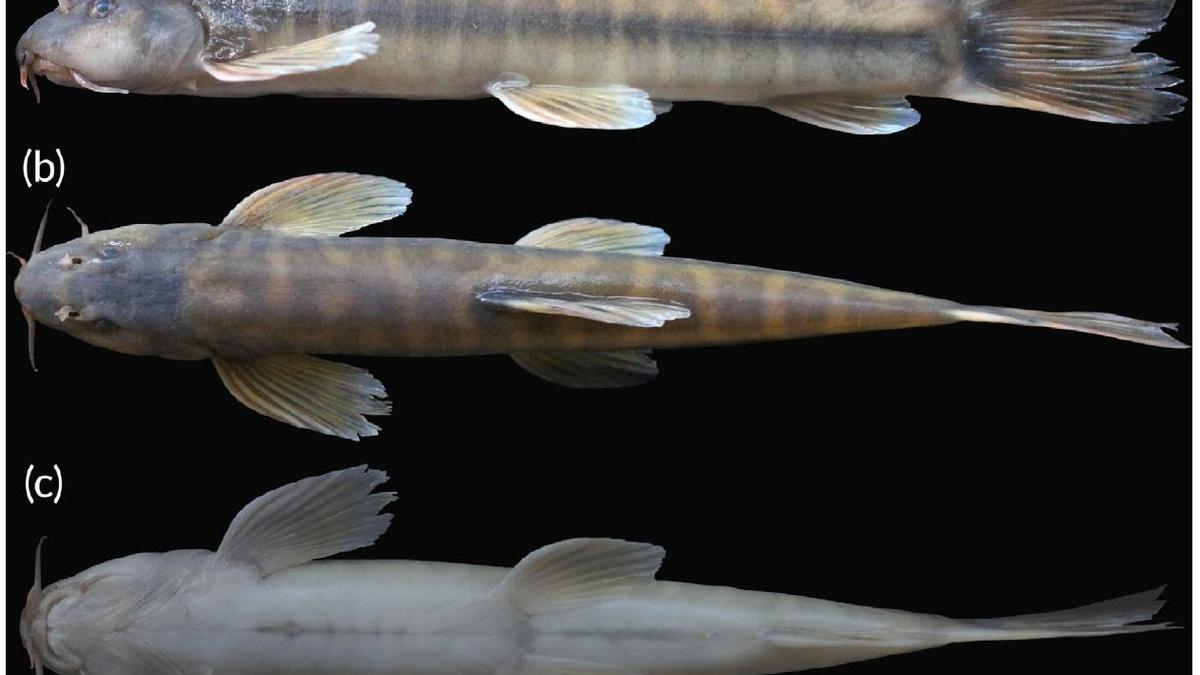
- 26 May 2025
In News:
A newly discovered species of cave-dwelling loach, Schistura densiclava, has been recorded from the Krem Mawjymbuin cave in the East Khasi Hills district of Meghalaya, India. This species becomes the sixth known cave-dwelling fish from the state, emphasizing Meghalaya’s rich subterranean biodiversity.
Taxonomy and Classification
- Family: Nemacheilidae (bottom-dwelling freshwater fishes)
- Type: Troglophile — adapted to live in caves but can survive and reproduce in surface (epigean) waters.
- Distinct Feature: Unlike typical cave fishes, S. densiclava retains pigmentation and functional eyes, indicating adaptability to both subterranean and overground aquatic environments.
Habitat and Environment
- Found 60 meters inside the Krem Mawjymbuin, a limestone cave with a surveyed length of 1.6 km and an altitude of 206 meters.
- The species inhabits a cool, fast-flowing stream with a temperature of 18°C and low oxygen levels.
- The cave is ecologically sensitive and was previously in the news due to a local ban on worship at a Shivalinga-like formation within it.
Morphological Characteristics
- Coloration: Pale yellow-green body with 14–20 greyish to faint black vertical bars.
- Named densiclava due to the thick dark stripe near the dorsal fin ("densiclava" = Latin for "thick stripe").
- Sexual Dimorphism:
- Males: Slimmer with irregular patterns and puffier cheeks.
- Females: Sturdier with more consistent markings.
Scientific Significance
- Genetic testing confirmed Schistura densiclava as a distinct and previously unrecorded species.
- Its endemic distribution, limited to a single cave system, marks it as a species of high conservation concern.
- The discovery was published in the Journal of Fish Biology by a team led by Kangkan Sarma from Gauhati University, along with other Indian ichthyologists.
Tamil Nadu’s Space Industrial Policy and IN-SPACe

- 26 May 2025
In News:
Recently, the Tamil Nadu Cabinet approved its Space Industrial Policy, becoming the third state after Karnataka and Gujarat to adopt a dedicated strategy to stimulate investments and innovation in the space sector. This move aligns with the national framework set by the Indian Space Policy 2023 and supports India's growing space economy.
IN-SPACe and its Role:
- IN-SPACe (Indian National Space Promotion and Authorisation Centre) is an autonomous, single-window agency under the Department of Space (DoS).
- Created as part of India’s space sector reforms, it promotes and authorises the participation of Non-Governmental Entities (NGEs) in space activities.
- Functions include:
- Supporting private entities in the development of launch vehicles, satellites, and space-based services.
- Facilitating access to ISRO infrastructure and co-development initiatives.
- Providing support for research, innovation, and educational collaboration.
- Headquartered at Bopal, Ahmedabad, it serves as the bridge between ISRO and private sector stakeholders.
- IN-SPACe encouraged Tamil Nadu to formulate the Space Industrial Policy to promote the state’s role in India’s space mission.
Tamil Nadu’s Strategic Space Assets:
- ISRO Propulsion Complex (IPRC), Mahendragiri (Tirunelveli): Engaged in testing cryogenic engines, liquid propulsion systems, and R&D activities.
- Second Spaceport at Kulasekarapattinam (Thoothukudi): Enhances satellite launch capacity, especially for small satellites and polar launches.
- Presence of space-tech startups in areas like:
- Reusable launch vehicles
- In-space manufacturing
- In-orbit refuelling
- Satellite data analytics
- Space Technology Incubation Centre (STIC) at NIT Trichy supports southern-region ISRO projects and academia-industry collaboration.
- Over 250 ISRO vendors operate in the state, creating a robust supply chain ecosystem.
Objectives of Tamil Nadu's Space Industrial Policy:
- Target investment: ?10,000 crore over the next 5 years.
- Employment generation: Estimated 10,000 direct and indirect jobs.
- Strengthens Tamil Nadu’s capabilities in:
- Electronics and precision manufacturing
- Strategic electronics and space-grade components
- Promotes integration of space technologies in governance (e.g., disaster management, fisheries, agriculture, health, transport).
Policy Incentives:
- Payroll subsidy for companies engaged in R&D or setting up Global Capability Centres.
- Space Bays: Select regions will be designated to offer structured incentive packages for investments below ?300 crore.
- Industrial housing incentive: 10% subsidy (capped at ?10 crore) for building residential facilities in space industrial parks.
- Green initiatives: 25% capital subsidy (capped at ?5 crore) for environmentally sustainable developments.
Institutional Support:
- TIDCO (Tamil Nadu Industrial Development Corporation) signed an MoU with IN-SPACe to facilitate:
- Manufacturing activities
- Strategic collaborations with private companies
- R&D and design-based projects in the space domain
Landmine and Cluster Munition Treaties
- 07 Apr 2025
In News:
In a major shift that challenges global disarmament efforts, NATO members Poland, Finland, and the three Baltic states—Estonia, Latvia, and Lithuania—have announced their withdrawal from the 1997 Ottawa Convention banning anti-personnel landmines. These countries cite growing security threats from Russia amidst the ongoing Russia-Ukraine war as the primary reason for exiting the treaty.
Ottawa Convention (1997)
- Objective: To prohibit the use, stockpiling, production, and transfer of anti-personnel landmines, and to mandate the destruction of existing stockpiles within four years.
- Adoption and Enforcement: Finalized in Oslo on 18 September 1997, it came into force on 1 March 1999.
- Scope: The treaty bans anti-personnel mines but not anti-vehicle mines.
- Membership: 164 states are party to the convention. However, major powers like the US, Russia, China, and India have not signed or ratified it.
- Humanitarian Impact:
- Over 80% of landmine victims are civilians (ICRC).
- Ukraine has been declared the most mined country in the world (UN, October 2024), with 1,286 civilian victims reported as of August 2024.
- Victim Assistance: The Convention includes obligations to assist mine victims, many of whom suffer permanent disabilities.
Motivations Behind Withdrawals
- The withdrawing countries argue that their security environment has fundamentally changed, especially with the threat of Russian aggression.
- They fear that any ceasefire in Ukraine might allow Russia to regroup and pose a direct threat to bordering nations.
- By exiting the convention, these states aim to achieve military parity with Russia, which is not a party to the treaty.
- Poland has already indicated interest in resuming landmine production.
Impact on Global Demining and Humanitarian Efforts
- The move risks reversing decades of global advocacy and humanitarian work.
- Compounding the problem, global demining efforts are under stress due to sharp US funding cuts. The US had been the largest donor, contributing over $300 million annually, or 40% of global demining funds (Landmine Monitor 2024).
- Though the US has resumed some humanitarian demining programs (March 2024), specific details remain limited.
Convention on Cluster Munitions (2008)
- Purpose: Bans the use, production, transfer, and stockpiling of cluster munitions.
- Mechanism: These weapons disperse bomblets over large areas, posing serious risks to civilians long after deployment.
- Membership: 112 state parties and 12 signatories.
- Recent Withdrawal: Lithuania has signaled its withdrawal from this treaty.
- Non-Signatories: India, the US, Russia, China, Ukraine, and Israel have not joined the convention due to strategic and military considerations.
- Recent Usage: In 2023, the US supplied cluster munitions to Ukraine as part of its defense against Russian invasion.
6th BIMSTEC Summit
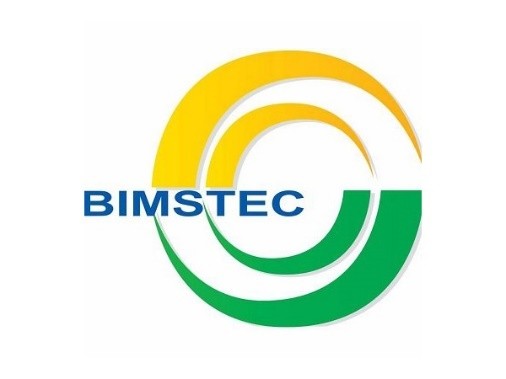
- 07 Apr 2025
In News:
The 6th BIMSTEC Summit was recently held in Bangkok, Thailand, under the theme “BIMSTEC: Prosperous, Resilient, and Open.”The Indian Prime Minister participated in the Summit, emphasizing regional connectivity, economic integration, and collective resilience.
About BIMSTEC
- Full Form: Bay of Bengal Initiative for Multi-Sectoral Technical and Economic Cooperation
- Members: Bangladesh, Bhutan, India, Myanmar, Nepal, Sri Lanka, and Thailand
- Founded: 1997 (Bangkok Declaration)
- Initial Name: BIST-EC (later BIMST-EC, and finally BIMSTEC in 2004)
- Population & Economy: Covers 1.7 billion people (~22% of world population) with a combined GDP of USD 5.2 trillion (2023)
Key Outcomes:
- Summit Declarations and Documents
- Bangkok Vision 2030: Adopted as a roadmap for regional economic integration, technological collaboration, and resilience against global challenges.
- 21-point Action Plan: Proposed by India to revitalize BIMSTEC as a dynamic platform for regional cooperation, especially in light of SAARC’s dormancy.
- Institutional and Governance Reforms
- Enforcement of the BIMSTEC Charter.
- Institutionalization of the Home Ministers' Mechanism, with India offering to host the first meeting.
- Strengthening mechanisms to counter terrorism, cybercrime, and human trafficking.
India’s Key Announcements and Initiatives
A. Centres of Excellence
India announced the establishment of BIMSTEC Centres of Excellence in:
- Disaster Management
- Sustainable Maritime Transport
- Traditional Medicine
- Agricultural Research and Training
B. Connectivity and Digital Infrastructure
- Operationalization of the BIMSTEC Energy Centre in Bengaluru.
- Proposal to link India’s UPI with BIMSTEC payment systems.
- Launch of a pilot study on Digital Public Infrastructure (DPI) for governance and service delivery.
C. Trade and Economic Integration
- Proposal to create a BIMSTEC Chamber of Commerce.
- Plan for an Annual Business Summit.
- Suggestion for a feasibility study on trade in local currencies.
D. Maritime and Space Cooperation
- Proposal for a Sustainable Maritime Transport Centre in India.
- Support for electric grid interconnection across member states.
- Space cooperation: development of nano-satellites, remote sensing data sharing, and training via a dedicated ground station.
Human Development and Cultural Engagement
- BIMSTEC for Organized Development of Human Resource Infrastructure (BODHI):
- Training for 300 youth annually.
- Scholarships (e.g., Nalanda University, Forestry Research Institute).
- Diplomatic training programs.
Health Sector
- Cancer Care Capacity Building Program for BIMSTEC countries.
Youth and Cultural Initiatives
- BIMSTEC Traditional Music Festival
- Young Leaders’ SummitandHackathon
- Young Professional Visitors Program
- BIMSTEC Athletics Meet (2025)
- BIMSTEC Games (2027)– to mark the 30th anniversary
India–Thailand Strategic Partnership (Announced on Sidelines)
Maritime and Regional Cooperation
- Strengthening ties via Indo-Pacific Oceans Initiative (IPOI) and ASEAN Outlook on Indo-Pacific (AOIP).
- Boosting connectivity via the India–Myanmar–Thailand Trilateral Highway.
Defence and Security
- Expansion of defence dialogues and joint military exercises (e.g., Exercise Maitree).
- Cooperation in cybersecurity, counter-terrorism, and intelligence sharing.
Economic and Trade Engagement
- Enhancing supply chain resilience, boosting bilateral trade, and exploring FTA upgradation.
Science and Innovation
- Joint ventures in renewable energy, space technology, and biotech innovation.
- Cooperation on digital public infrastructure.
Cultural Relations
- Promotion of Buddhist heritage, education exchanges, and tourism.
- Engagement with the Indian diaspora in Thailand.
Technology and Innovation Report 2025

- 07 Apr 2025
In News:
India has been ranked 10th globally in terms of private sector investments in Artificial Intelligence (AI) in 2023, according to the Technology and Innovation Report 2025, released by the United Nations Conference on Trade and Development (UNCTAD). The report highlights the evolving global AI landscape and underscores India's growing role in frontier technologies.
About the Technology and Innovation Report
- Published by: UNCTAD (United Nations Conference on Trade and Development).
- Objective: To provide policy-relevant insights on emerging issues in science, technology, and innovation (STI), especially from the perspective of developing countries.
- Theme of the 2025 Edition: “Inclusive Artificial Intelligence for Development”.
- Purpose: Aims to assist policymakers in formulating inclusive and equitable STI policies amid the rapid expansion of AI technologies.
Key Highlights of the 2025 Report
- India’s Position:
- Ranked 10th globally for private AI investments, amounting to $1.4 billion in 2023.
- Among developing countries, only India and China feature prominently in global AI investments.
- India’s growing prominence reflects its rising technological capacity and startup ecosystem.
- Global Investment Trends:
- The United States led global AI investment with $67 billion (70% of global private investment).
- China ranked second with $7.8 billion.
- The report reveals that just 100 companies, mainly from the US and China, account for 40% of global private R&D investment in AI, signifying a concentration of technological power.
- AI and Global Employment:
- The report warns that up to 40% of global jobs could be influenced by AI-driven automation, necessitating adaptive policies, especially in the Global South.
- Governance Gaps:
- 118 countries, mostly from the Global South, are not participating meaningfully in global AI governance dialogues, highlighting a digital divide in international policy spaces.
- Recommendations for Developing Countries:
UNCTAD urges developing nations to strengthen three critical areas, termed “key leverage points”:- Infrastructure: Improve digital and physical infrastructure.
- Data Ecosystems: Ensure data accessibility, quality, and sovereignty.
- Human Capital and Skills: Invest in AI-related education and skilling.
- India’s Broader Performance:
- Ranked 36th out of 170 countries on the Readiness for Frontier Technologies Index 2024, an improvement from 48th in 2022.
Antimony Discovery in Balochistan, Pakistan
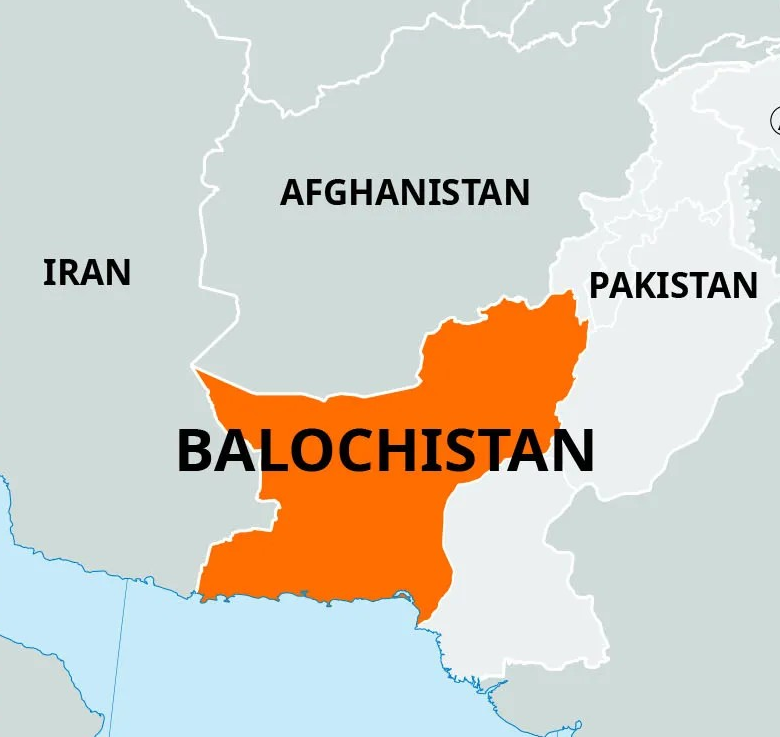
- 07 Apr 2025
In News:
In a recent geopolitical development, Pakistan has reportedly discovered a significant deposit of Antimony in the Balochistan region — an area marred by conflict and instability. This finding holds both economic and strategic significance, given the growing global demand for rare and critical minerals.
About Antimony
- Chemical Element: Antimony (Symbol: Sb, Atomic Number: 51) is a metalloid, meaning it exhibits properties of both metals and non-metals.
- Physical Properties:
- Solid at room temperature.
- Poor conductor of heat and electricity.
- Found in commercial forms such as ingots, broken pieces, granules, and cast cakes.
Geological Occurrence
- Primary Ore: The chief ore of Antimony is Stibnite (Sb?S?).
- Mode of Occurrence: Found in volcanic-associated deposits and deep-seated veins, formed under moderate to high temperature and pressure.
- Also commonly obtained as a byproduct from lead-zinc-silver mining operations.
Global Production Landscape
- China is the dominant global producer, accounting for over 88% of world production.
- Other notable producers include Russia, Bolivia, and Tajikistan.
- India currently does not have significant reserves or production of Antimony, making it dependent on imports for industrial use.
Key Industrial and Strategic Uses
- Electronics Industry:Used in manufacturing semiconductors, infrared detectors, and diodes.
- Alloys:
- Alloyed with lead and other metals to increase hardness and strength.
- Lead-antimony alloys are extensively used in lead-acid batteries.
- Defense and Printing:Utilized in the production of bullets, type metal for printing, and cable sheathing.
- Flame-Retardants and Ceramics:Antimony compounds are key ingredients in flame-retardant materials, as well as in paints, enamels, glass, and pottery.
Hansa-3 Trainer Aircraft
- 07 Apr 2025
In News:
In a significant milestone for India’s indigenous aviation sector, the Hansa-3 trainer aircraft has recently been approved for training aircrew for pilot licences. Notably, the production of this aircraft will now be undertaken by private industry, marking a step forward in India’s push for self-reliance in aviation technology and defence manufacturing.
About Hansa-3 Trainer Aircraft
- India’s First Indigenous Flying Trainer: The Hansa-3 is the country’s first indigenously developed light trainer aircraft.
- Developed by: The aircraft was designed and developed by the CSIR–National Aerospace Laboratories (NAL), Bengaluru, under the Council of Scientific and Industrial Research (CSIR).
- Intended Use: Specifically designed for flying clubs in India, it is well-suited for Commercial Pilot Licensing (CPL) training, owing to its cost-effectiveness and low fuel consumption.
Key Features and Technological Advancements
- Configuration: It is a two-seater, low-wing monoplane, optimized for pilot training missions.
- Engine: Powered by a Rotax Digital Control Engine, known for high efficiency and performance.
- Advanced Airframe: Incorporates Just-In-Time Prepreg (JIPREG) composite lightweight material, enhancing aerodynamic efficiency and reducing fuel use.
- Modern Cockpit: Equipped with a glass cockpit and bubble canopy, offering a wide panoramic view — critical for pilot situational awareness.
- Electronic Systems:
- Electric Flaps for improved handling.
- Advanced Electronic Fuel Injection System for automatic adjustment of fuel-air mixture across varying altitudes, enhancing performance and fuel economy.
Significance for India
- Promotes Atmanirbhar Bharat: The transition to private manufacturing aligns with the government’s vision of strengthening the domestic aerospace ecosystem under the Make in India initiative.
- Reduces Dependency: Reduces reliance on imported aircraft for pilot training, supporting India’s goal of strategic autonomy in aviation technology.
- Skill Development: Enhances the capacity of Indian flying schools and contributes to the growth of the civil aviation sector by producing more trained pilots domestically.
Kannadippaya

- 06 Apr 2025
In News:
The traditional tribal mat Kannadippaya from Kerala has been granted the Geographical Indication (GI) tag, marking a significant milestone in the protection and promotion of India’s tribal handicraft heritage.
About Kannadippaya
- Origin and Craftsmanship:Kannadippaya (literally, mirror mat) is a unique handicraft made by various tribal communities of Kerala, notably the Oorali, Mannan, Muthuvan, Malayan, Kadar, Ulladan, Malayarayan, and Hill Pulaya tribes. The craft is predominantly practiced in Idukki, Thrissur, Ernakulam, and Palakkad districts.
- Raw Material:The mat is woven using the soft inner layers of reed bamboo (Teinostachyumwightii) and other bamboo species such as Ochlandra sp., known locally by various names including Njoonjileetta and Kanjoora.
- Functional and Aesthetic Value:The mat’s reflective design gives it a mirror-like appearance. It offers thermal comfort by providing warmth during winter and cooling during summer, showcasing traditional ecological knowledge.
- Historical Significance:Historically, these mats were offered by tribal communities as a token of honour to kings, reflecting the cultural and symbolic value attached to the craft.
Significance of the GI Tag
- Cultural Recognition:Kannadippaya becomes Kerala’s first tribal handicraft to receive a GI tag, acknowledging its cultural uniqueness and heritage value.
- Economic Empowerment:The GI tag is expected to:
- Provide market protection for tribal artisans.
- Enable branding and certification, enhancing the product's authenticity.
- Open national and international markets, especially for eco-friendly, sustainable products.
- Encourage entrepreneurship among tribal communities, reducing dependency on intermediaries.
- Institutional Support:
- The Kerala Forest Research Institute (KFRI) played a pivotal role in securing the GI tag, along with contributions from experts.
- The application was supported by tribal cooperatives like UnarvuPattikavarghaVividodeshaSahakarana Sangam and Vanasree Bamboo Craft, Idukki.
Challenges and the Way Forward
- Lack of Structured Market:Artisans have highlighted the absence of a robust marketing ecosystem. There is a need for State and Central government interventions to:
- Facilitate marketing infrastructure and e-commerce platforms.
- Provide training and capacity-building for artisans.
- Encourage younger generations to take up the craft through incentives and education.
- Sustainability and Global Demand:Given the rising demand for eco-friendly and sustainable products globally, Kannadippaya has the potential to become a symbol of India’s green and inclusive development model.
Artificial Rain to combat Delhi’s Air Pollution
- 06 Apr 2025
In News:
With the national capital grappling with chronic air pollution every winter, the Delhi Government is exploring artificial rain (cloud seeding) as a potential mitigation strategy. In a recent high-level meeting chaired by Environment Minister Manjinder Singh Sirsa, experts and representatives from key institutions brainstormed the feasibility and logistics of implementing cloud seeding in Delhi's airspace.
What is Artificial Rain (Cloud Seeding)?
- Cloud seeding is a form of weather modification aimed at inducing rainfall.
- It involves spraying chemical agents such as silver iodide or salt particles into clouds to stimulate condensation and precipitation.
- Requires favourable meteorological conditions, especially adequate moisture and cloud density.
- Usually conducted using aircraft or ground-based dispersal systems.
Significance for Delhi:
- Rainfall helps settle airborne particulate matter (PM2.5 and PM10), thereby reducing pollution levels.
- Delhi’s air quality worsens in winter due to a combination of low wind speeds, crop residue burning, vehicular and industrial emissions, and construction dust.
- Artificial rain could serve as an emergency intervention to improve air quality during severe pollution episodes.
Key Highlights of the Meeting:
- Convened by Delhi Environment Department with participation from:
- CPCB, DPCC
- Ministry of Defence, MoEFCC
- IIT-Kanpur, India Meteorological Department (IMD)
- Directorate General of Civil Aviation (DGCA), AAI
- IIT-Kanpur scientists shared results from previous successful cloud seeding trials in Kanpur (2023), demonstrating its potential under ideal conditions.
- Past trials in 2018 also showed partial success, with rainfall occurring in 5 out of 6 attempts during pre-monsoon months.
Challenges Identified:
- Weather-dependence: Effectiveness relies heavily on cloud presence and moisture levels, which are limited in Delhi during winters.
- Airspace clearance and coordination among multiple agencies (civil aviation, defence).
- High costs and uncertain outcomes make it a supplementary, not primary, solution.
Complementary Measures Underway:
- Delhi’s 14-point action plan to curb dust pollution includes:
- Anti-smog guns, covering construction sites, cleaning of construction vehicles, andregulated debris disposal.
- Exploring static ionisation systems as an alternative to cloud seeding for artificial precipitation.
Mount Marapi Eruption
- 06 Apr 2025
In News:
In May 2025, Mount Marapi, one of Indonesia’s most active volcanoes, erupted, spewing a column of volcanic ash 1.5 km into the sky. The event has once again highlighted the seismic vulnerability of the Pacific Ring of Fire, where tectonic activity frequently triggers volcanic eruptions and earthquakes.
About Mount Marapi
- Location: Situated in the Padang Highlands of western Sumatra, Indonesia.
- Type: A stratovolcano (composite volcano), consisting of successive layers of lava, ash, and pyroclastic material.
- Elevation: Rises to 2,891 meters (9,485 feet) above sea level, making it the highest peak in the region.
- Summit Feature: Contains the Bancah caldera (approx. 1.4 km wide), with multiple overlapping craters.
- Tectonic Setting: Lies on the Pacific Ring of Fire, a highly seismically active zone encircling the Pacific Ocean.
- Notable Eruption: In 1979, a deadly eruption-induced lahar (volcanic mudflow) caused by intense rainfall resulted in 60 fatalities.
Seaweed Farming in India
- 06 Apr 2025
In News:
With growing attention on sustainable marine resources and coastal livelihood enhancement, the Government of India is promoting seaweed cultivation as part of its broader Blue Economy strategy. Recognized for its nutritional, economic, and ecological value, seaweed farming is emerging as a viable livelihood and environmental solution for India's coastal communities.
What is Seaweed?
Seaweed is a nutrient-rich marine plant that grows in shallow ocean waters. It is:
- Rich in vitamins, minerals, amino acids, and 54 trace elements.
- Known to aid in managing non-communicable diseases such as cancer, diabetes, cardiovascular ailments, and hypertension.
- Used in food, cosmetics, fertilizers, medicines, and industrial gelling agents like agar, alginate, and carrageenan.
Global Significance and Industry Potential
- The global seaweed market is valued at US$ 5.6 billion and projected to reach US$ 11.8 billion by 2030 (World Bank).
- Major consumers: Japan, China, and South Korea.
- India possesses vast untapped potential with over 7,500 km of coastline and 844 identified seaweed species, of which ~60 are commercially viable.
Seaweed and the Blue Economy in India
Government Initiatives:
- Pradhan Mantri MatsyaSampada Yojana (PMMSY) (launched in 2020):
- Total Outlay: ?20,050 crore.
- ?640 crore allocated for seaweed development (2020–25).
- Goal: Increase seaweed production to 1.12 million tonnes in five years.
- Projects funded:
- Multipurpose Seaweed Park in Tamil Nadu.
- Seaweed Brood Bank in Daman & Diu.
- Provision of 46,095 rafts and 65,330 monocline tubenets to farmers.
Supportive Regulatory Measures:
- Seaweed-based biostimulants regulated under the Fertilizer (Control) Order, 1985.
- Integrated with Paramparagat Krishi Vikas Yojana (PKVY) and MOVCDNER to promote organic farming.
Economic, Environmental & Social Benefits
Economic:
- Seaweed farming offers high returns — e.g., farming Kappaphycusalvarezii may yield up to ?13.28 lakh/hectare/year.
- Generates foreign exchange through exports of seaweed-based bio-products.
Environmental:
- Requires no land, freshwater, fertilizers, or pesticides.
- Absorbs CO?, combats ocean acidification, and enhances marine biodiversity.
Social:
- Provides alternative livelihoods for fishers.
- Particularly beneficial for women and youth, promoting inclusive growth in coastal regions.
Success Stories and Innovations
Women Empowerment in Tamil Nadu:
Four women from Mandapam, Tamil Nadu, trained under PMMSY, successfully cultivated seaweed, producing 36,000 tonnes despite cyclones and market challenges. Their venture created employment and inspired other women.
Tissue Culture Innovation:
The CSIR-Central Salt and Marine Chemicals Research Institute (CSIR-CSMCRI)developed tissue-cultured Kappaphycusalvareziiseedlings, leading to:
- 20–30% higher growth rates.
- Better carrageenan quality.
- Enhanced farmer productivity in Tamil Nadu’s coastal districts.
Challenges and Way Forward
Challenges:
- Vulnerability to climatic shocks (cyclones, salinity changes).
- Limited market access and value chain infrastructure.
- Need for increased awareness and skill-building in coastal areas.
Recommendations:
- Strengthen public-private partnerships and R&D for better cultivars.
- Expand seaweed farming cooperatives with financial inclusion mechanisms.
- Promote Blue Economy integration in coastal development policies.
Domestically Manufactured Iron & Steel Products (DMISP) Policy – 2025
- 06 Apr 2025
In News:
To address the rising steel imports and strengthen domestic industry under the Atmanirbhar Bharat initiative, the Government of India has notified the DMISP Policy – 2025, mandating the exclusive use of Indian steel in government procurement and incorporating a reciprocity clause against non-cooperative foreign countries.
About the DMISP Policy – 2025
- Nodal Ministry: Ministry of Steel
- Aim:To promote the use of domestically produced iron and steel in government-funded projects, thereby reducing import dependence, enhancing self-reliance, and safeguarding the interests of the Indian steel industry.
- Key Objectives
- Promote Self-Reliance: Advance the vision of Atmanirbhar Bharat by boosting domestic steel production and consumption.
- Curb Imports: Mitigate the adverse impact of rising steel imports on Indian steelmakers.
- Support Domestic Industry: Provide a level playing field to Indian steel manufacturers in public procurement.
- Encourage Value Addition: Increase domestic sourcing and manufacturing of capital goods used in steel production.
Salient Features of the Policy
- Mandatory Use of Indian Steel:
- Applicable across all Union Ministries, PSUs, statutory bodies, and trusts.
- Covers products such as flat-rolled steel, rods, bars, and rails.
- Steel must meet the “Melt and Pour” condition — i.e., must be melted and solidified in India.
- Reciprocity Clause:
- Nations that restrict Indian firms from participating in their public procurement (e.g., China) are barred from Indian government tenders.
- Exceptions can be made only with the approval of the Ministry of Steel.
- Ban on Global Tenders (GTE):
- GTEs for steel products are prohibited.
- GTEs for capital goods (e.g., furnaces, rolling mills) are permitted only for contracts above ?200 crore, with prior clearance.
- Domestic Value Addition Requirement:
- Capital goods used in steel production must have at least 50% local value addition.
- Certification by statutory or cost auditors is mandatory.
- Procurement Applicability:
- Mandatory for all government procurement above ?5 lakh.
- Also extends to centrally funded but state-executed projects.
- Monitoring and Enforcement:
- A Standing Committee chaired by the Secretary (Steel) will:
- Oversee compliance and redress grievances.
- Grant exemptions in case of non-availability of Indian products.
- A Standing Committee chaired by the Secretary (Steel) will:
- Penalties for Non-Compliance:False declarations may result in blacklisting of suppliers and forfeiture of earnest money deposits.
Transiting Exoplanet Survey Satellite (TESS)

- 05 Apr 2025
In News:
- An international team of astronomers, using NASA’s TESS mission, has discovered a new warm Jupiter-type exoplanet located over 1,000 light-years away.
- “Warm Jupiters” are gas giants that orbit their stars at moderate distances, experiencing higher temperatures than Jupiter but cooler than “hot Jupiters”.
About TESS (Transiting Exoplanet Survey Satellite)
- Launched: March 2018 by NASA.
- Objective: To discover thousands of exoplanets (planets outside our solar system) by observing the brightest dwarf stars in the sky.
- Successor to: NASA’s Kepler Space Telescope, which pioneered large-scale exoplanet discovery (2009–2018).
Working Principle:
- TESS uses the transit method:
- It monitors periodic dips in star brightness, caused when a planet crosses (or transits) in front of its host star.
- This reveals the size (diameter) of the exoplanet and helps estimate its orbital characteristics.
- Helps identify habitable zone planets, where liquid water may exist on Earth-like worlds.
Mission Highlights:
- Prime Mission Duration: Two years, completed on July 4, 2020.
- Covered nearly 75% of the sky, divided into 26 sectors.
- Discovered 66 confirmed exoplanets during the prime mission.
- Now operating under an extended mission, continuing to explore distant planetary systems.
- Finds planets of varied sizes and compositions, from rocky Earth-like bodies to gas giants.
Heard and McDonald Islands
- 05 Apr 2025
In News:
Donald Trump has imposed a 10% tariff on imports from the Heard and McDonald Islands.
Geographical Context
- Heard Island and McDonald Islands (HIMI) are remote, sub-Antarctic volcanic islands in the southern Indian Ocean, situated:
- ~4,100 km southwest of Perth (Australia),
- ~1,600 km north of the Antarctic coast.
- They are one of Australia’s seven external territories, administered directly by the Australian government.
Physical and Ecological Significance
- Volcanically active: Home to Big Ben (2,745 m, Mawson Peak), Australia’s highest mountain outside the mainland and Tasmania.
- McDonald Island has expanded due to recent eruptions in the 1990s and 2000s.
- Only volcanically active sub-Antarctic islands, making them valuable for studying:
- Earth’s crustal processes,
- Glacial dynamics,
- Oceanic and atmospheric changes.
- Designated as a UNESCO World Heritage Site (1997) and classified under IUCN Category Ia (Strict Nature Reserve).
Biodiversity
- Inhabited by marine birds and mammals like:Penguins, elephant seals, and seabirds.
- Notable for being free from invasive species, aiding biodiversity and evolutionary research.
- Largely uninhabited by humans; no known permanent population.
US Tariff Controversy
- The US President (Donald Trump) imposed a 10% tariff on imports from HIMI—despite the islands having no known exports or trade with the US.
- The islands have no recent human presence and are mainly home to wildlife.
- Other Australian external territories targeted by similar tariffs include:
- Norfolk Island – 29% tariff despite limited economic activity.
- Cocos (Keeling) Islands and Christmas Island – 10% tariff.
- The British Indian Ocean Territory (BIOT), including Diego Garcia, also faced a 10% tariff. Diego Garcia hosts a US-UK military base, with no civilian population.
Saturn becomes undisputed 'Moon King' of Solar System
- 05 Apr 2025
In News:
In a major astronomical breakthrough, scientists have discovered 128 new moons orbiting Saturn, raising its total confirmed moon count to 274—the highest for any planet in the solar system. This discovery has been officially recognized by the International Astronomical Union (IAU).
About the Discovery
- The moons were detected using the Canada-France-Hawaii Telescope with a method called “shift and stack”, which enhances the visibility of faint objects moving across the sky.
- Most of the newly identified moons are irregular, small, and non-spherical, indicating a likely origin as captured asteroids or remnants of larger celestial bodies.
- Their clustered orbits suggest a history of violent collisions or fragmentation, possibly linked to the chaotic early evolution of the solar system.
Significance
- Confirms Saturn’s status as the planet with the most known moons, overtaking Jupiter (95 moons as of 2024).
- Enhances understanding of planetary formation, orbital dynamics, and the evolution of ring and satellite systems.
- May contribute to refining the scientific definition of a moon and deepen knowledge of irregular satellite formation in gas giants.
Key Facts about Saturn
- Position: Sixth planet from the Sun.
- Size: Second-largest planet after Jupiter.
- Type: Gas giant composed mainly of hydrogen and helium, with traces of methane and ammonia.
- Density: Approximately 0.69 g/cm³, the only planet less dense than water.
- Shape: Oblate due to rapid rotation—flattened at poles, bulging at the equator.
- Rings: Made of ice, dust, and rocky debris.
- Orbit: About 9.59 AU (1,434 million km) from the Sun; orbital period ~29.45 Earth years.
- Weather: Hosts extreme storms like the Great White Spot, recurring roughly once every Saturnian year (~29 Earth years).
Important Moons of Saturn
Titan
- Largest moon of Saturn and second-largest in the solar system, larger than Mercury.
- Only moon with a dense atmosphere, rich in nitrogen and methane.
- Features liquid hydrocarbon lakes near the poles.
- Explored by Cassini-Huygens mission; lander touched down in 2005.
Enceladus
- An icy moon with a subsurface liquid ocean.
- Known for its highly reflective surface and water-ice geysers.
- Cassini (2005) observed plumes of water vapor ejecting at ~400 m/s.
- Discovery of silica nanograins suggests hydrothermal activity, making it a prime target in the search for extraterrestrial life.
Mitathal and Tighrana: Newly Protected Harappan Sites in Haryana

- 05 Apr 2025
In News:
The Haryana Government has declared Mitathal and Tighrana, two historically significant Harappan civilisation sites in Bhiwani district, as protected archaeological sites under the Haryana Ancient and Historical Monuments and Archaeological Sites and Remains Act, 1964.
Location and Legal Status
- Both sites are located in Mitathal and Tighrana villages of Bhiwani district, Haryana.
- The notification was issued on March 13, 2025, designating a 10-acre area at Mitathal for protection.
- The Heritage and Tourism Department will ensure preservation through site fencing and deployment of guards.
Mitathal Site: Key Highlights
- Period: Dates to the Copper-Bronze Age, roughly 3rd to 2nd millennium BCE.
- Archaeological Finds:
- Well-baked red pottery with black painted motifs like pipal leaves and fish scales.
- Beads, copper tools, bangles, terracotta, and bone artefacts.
- Historical Timeline:
- First identified in 1913 through Samudragupta coins.
- Systematic excavations began in 1965–68 and continued post-2016 by the Central University of Haryana.
- Cultural Features:
- Reflects urban planning and craftsmanship typical of the Harappan Civilization.
Tighrana Site: Cultural Significance
- Chronology: Rich in pre-Harappan, Harappan, and post-Harappan layers.
- Inhabitants: Associated with Sothian culture – early Chalcolithic farming communities (~2400 BCE).
- Settlement Traits:
- Mud-brick houses, some possibly fortified.
- Use of bichrome wheel-made pottery (black and white designs).
- Artefacts:Green carnelian bangles, beads, and tools suggest a thriving bead and jewellery industry.
Archaeological and Cultural Importance
- Continuity of Settlement: Offers insight into continuous human occupation from Pre-Siswal to Post-Harappan periods.
- Socio-economic Insights:Demonstrates early agricultural practices, urban planning, and craft traditions in the Indo-Gangetic divide.
Background: Harappan Civilization
- Also known as the Indus Valley Civilization (IVC); flourished around 2500 BCE.
- One of the world’s oldest urban civilizations, alongside Mesopotamia, Egypt, and China.
- Classified as Bronze Age due to artefacts made from copper-based alloys.
- Key excavations:
- Harappa (1921–22) by Daya Ram Sahni.
- Mohenjo-daro (1922) by R.D. Banerji, under supervision of Sir John Marshall (ASI).
Euphaeawayanadensis
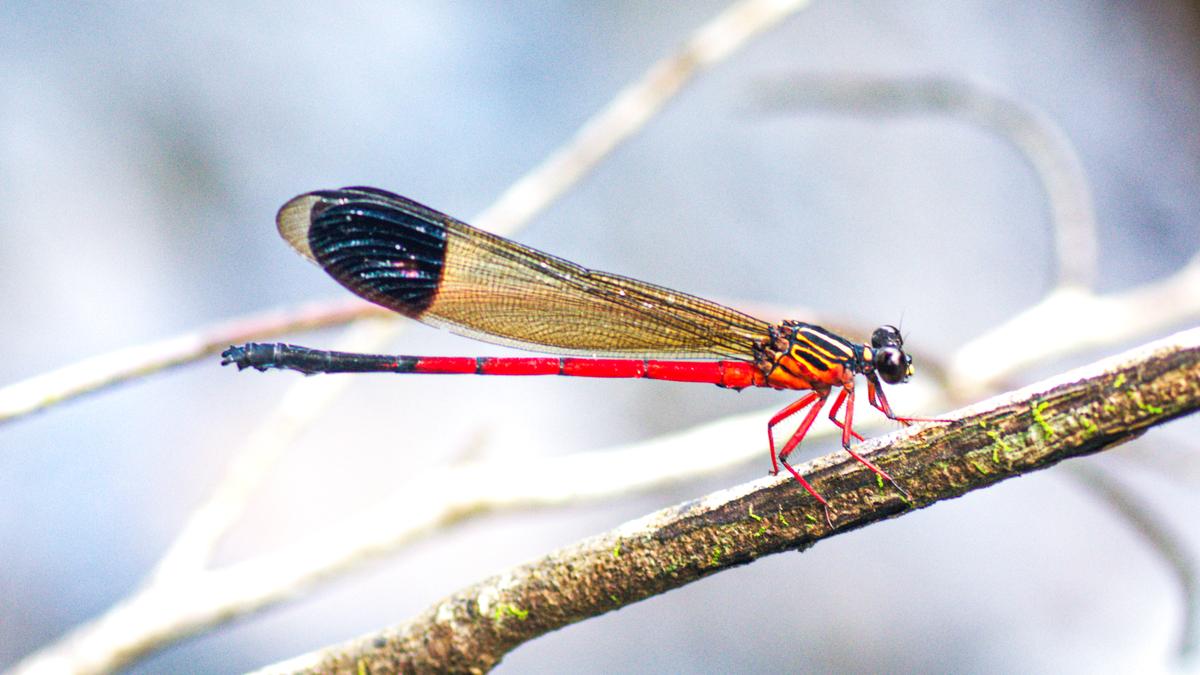
- 05 Apr 2025
In News:
A new species of damselfly, Euphaeawayanadensis, has been discovered in the Wayanad region of Kerala, marking a significant addition to India’s odonate diversity.
Key Details:
- Taxonomy:
- Belongs to the family Euphaeidae.
- Officially recognized as Kerala’s 191stodonate species (including damselflies and dragonflies).
- 223rd species recorded from the Western Ghats.
- Discovery and Research:
- First observed in 2013 at Kalindi River, Thirunelli, Wayanad.
- Confirmed after field studies conducted until 2023 across Wayanad, Aralam (Kannur), and western Coorg slopes (Karnataka).
- Discovery published in the peer-reviewed journal ENTOMON.
- Research Contributors:Collaborative effort involving scientists from Kerala Agricultural University, Alphonsa College, and conservation groups like Warblers and Waders, Travancore Nature History Society.
- Identification Process:
- Initially mistaken for Euphaeapseudodispar (from Maharashtra).
- Declared a distinct species based on morphological traits and genetic analysis.
Distinct Morphological Features
- Hind wing: Longer black patch compared to similar species.
- Stripes: Broader, uninterrupted humeral and antehumeral stripes in males.
- Male genital vesicle: Structurally unique from related species.
Habitat & Distribution
- Inhabits fast-flowing rocky streams with aquatic vegetation.
- Found in evergreen and semi-evergreen forests along stream banks.
- Active throughout the year except March–April (dry season).
- Shows restricted distribution, making it ecologically vulnerable.
Conservation Importance
- The discovery underlines the biodiversity richness of the Western Ghats.
- Highlights the need for targeted conservation of aquatic invertebrates in fragile ecosystems like Wayanad.
- Emphasised by experts from the IUCN Dragonfly Specialist Group.
Chandra’s Surface Thermophysical Experiment (ChaSTE)
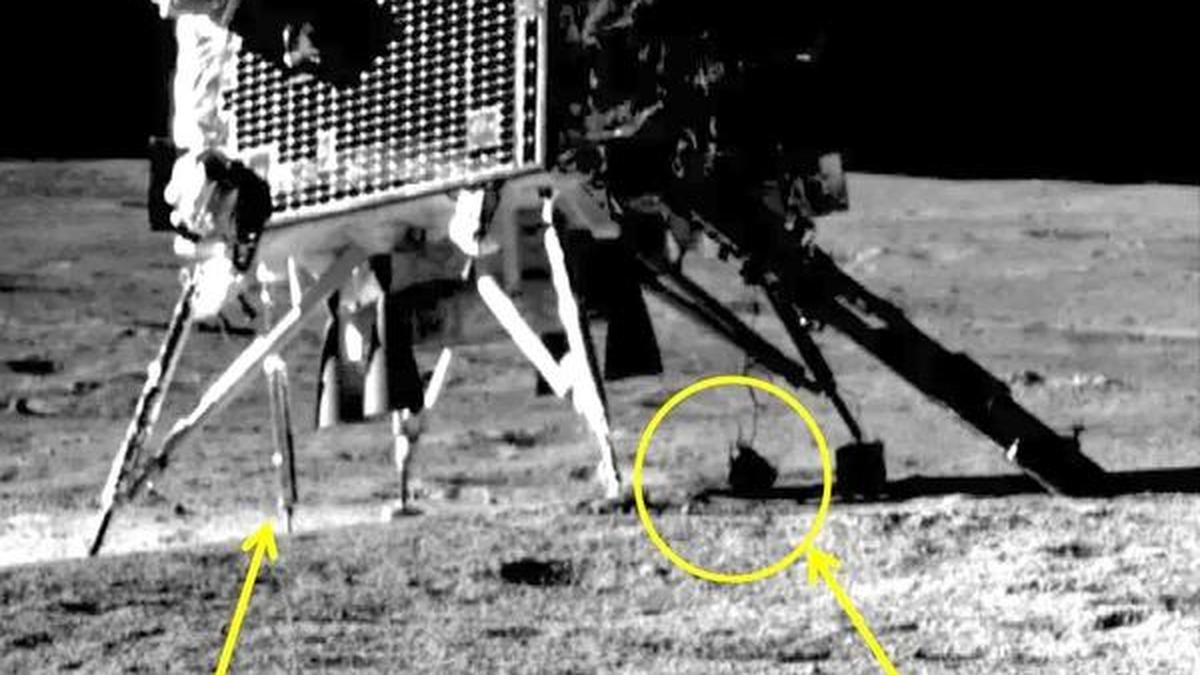
- 04 Apr 2025
In News:
India’s Chandrayaan-3 mission, which successfully landed on the Moon’s south polar region on August 23, 2023, achieved a global first with its Chandra’s Surface Thermophysical Experiment (ChaSTE) — the first thermal probe to successfully penetrate the soil of a celestial body and measure subsurface temperatures in situ.
About ChaSTE:
- Full form: Chandra’s Surface Thermophysical Experiment.
- Part of: Vikram lander (Chandrayaan-3).
- Depth achieved: Successfully tunnelled10 cm into the lunar regolith.
- Duration of operation: From August 23 to September 2, 2023.
- Significance: First successful deployment of a thermal probe into extraterrestrial soil.
Key Features:
- Temperature sensors: 10 sensors spaced 1 cm apart near the probe’s tip.
- Deployment mechanism: Unique rotation-based system — unlike previous missions that used hammering mechanisms.
- Measurement technique: Monitored changes in motor resistance and tip temperature to determine soil contact and depth.
Scientific Outcomes:
- Provided direct temperature profiles of lunar subsurface near the south pole.
- Enabled insights suggesting greater-than-expected presence of water ice beneath the surface.
Comparison with Previous Attempts:
Mission Agency Celestial Body Instrument Outcome
Rosetta – Philae (2014) ESA Comet 67P MUPUS Deployment failed due to
landing bounce
InSight (2018) NASA Mars HP3 ("The Mole") Could not collect data;
probe failed to burrow
as intended
Chandrayaan-3 (2023) ISRO Moon ChaSTE Successful soil
penetration and
temperature measurement
- Innovation Edge: Unlike ESA’s and NASA’s hammer-based devices, ChaSTE used a rotating drill, allowing steady penetration despite lunar soil resistance.
- Developed by the Physical Research Laboratory (PRL), Ahmedabad.
INSV Tarini at Cape Town

- 04 Apr 2025
In News:
The Indian Naval Sailing Vessel (INSV) Tarini, crewed by women officers Lt CdrDilna K. and Lt Cdr Roopa A., reached Cape Town, South Africa, marking the final international port in the Navika Sagar Parikrama II — a global circumnavigation mission by the Indian Navy.
About INSV Tarini:
- Type: 56-foot indigenously built sailing vessel.
- Commissioned: February 2017.
- Builder:Aquarius Shipyard Ltd., Goa, under the Make in India initiative.
- Features:
- Equipped with Raymarine navigation suite, satellite communication systems, and emergency steering.
- Designed to operate in extreme maritime conditions.
- Name Origin: Named after the Tara-Tarini hill shrine in Odisha; ‘Tarini’ in Sanskrit means “boat” and “saviour.”
Navika Sagar Parikrama II:
- Flagged off from Goa: October 2, 2024, by Admiral Dinesh K. Tripathi, Chief of the Naval Staff.
- Duration: ~8 months.
- Total distance: Approx. 23,400 nautical miles (43,300 km).
- Route across three oceans, rounding three major capes.
- Ports of call before Cape Town:
- Fremantle (Australia)
- Lyttelton (New Zealand)
- Port Stanley (Falkland Islands, UK)
Challenges Faced:
- Extreme weather: Winds > 50 knots (93 km/h), waves up to 7 metres.
- Rough seas and cold temperatures posed significant navigational challenges.
Significance:
- Demonstrates India’s commitment to women-led maritime expeditions.
- Strengthens India–South Africa naval cooperation:
- October 2024: INS Talwar participated in Exercise IBSAMAR.
- January 2025: INS Tushil made a port call at Durban.
Protection of Interests in Aircraft Objects Bill, 2025
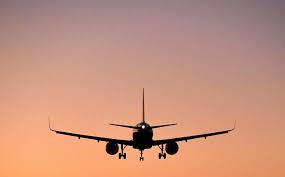
- 04 Apr 2025
In News:
The Protection of Interests in Aircraft Objects Bill, 2025, recently passed by the Rajya Sabha, aims to implement two key international agreements in India’s legal framework:
- Cape Town Convention on International Interests in Mobile Equipment (2001)
- Protocol to the Convention on Matters Specific to Aircraft Equipment
Objective:
To provide legal clarity and security to stakeholders in the aviation leasing industry by integrating global standards into Indian law.
Background:
- India became a signatory in 2008 after Cabinet ratification in 2007.
- The Cape Town Convention addresses complex issues of cross-border leasing and financing of high-value mobile assets like aircraft, helicopters, and engines.
- With over 86.4% of India's 840 commercial aircraft under leasing arrangements, there was an urgent need for a dedicated legal framework.
Key Provisions:
- Directorate General of Civil Aviation (DGCA) is designated as the registry authority.
- Responsible for registration and deregistration of aircraft.
- Creditors must notify the DGCA prior to initiating recovery actions in case of defaults.
- In case of default by airlines:
- Creditors can reclaim aircraft or related equipment within two months, or as per a mutually agreed period.
- Lessors and airlines are required to regularly inform the DGCA about dues and lease activities.
- The central government is empowered to make rules for the implementation of the convention and protocol.
Expected Benefits:
- Enhances legal protection for creditors and lessors.
- Reduces leasing costs by an estimated 8–10%, potentially lowering airfares for consumers.
- Encourages the growth of a domestic aircraft leasing industry, reducing dependence on foreign jurisdictions like Ireland, Singapore, and Dubai.
Civil Aviation Minister’s Remarks:
- The Bill addresses a long-standing legislative vacuum.
- It will bolster investor confidence and attract leasing businesses to India.
- Airfare regulation remains complex and is influenced by multiple factors including fuel prices, leasing charges, and maintenance costs.
India’s Agricultural Trade Dilemma
- 04 Apr 2025
In News:
India faces growing global pressure to liberalise its agricultural markets amidst trade negotiations, FTAs, and WTO commitments. At the same time, ensuring food security and protecting rural livelihoods remains a domestic priority.
Benefits of Global Trade Integration
- Export Revenue Growth: Enhanced access to global markets has increased agri-exports.E.g., India’s agricultural exports to the US were worth $8.4 billion.
- Technology & Investment Inflow: FTAs can attract agri-tech innovations and cold-chain infrastructure.E.g., partnerships with developed nations enable modernisation of storage and logistics.
- Market Efficiency: Global competition improves price discovery and benefits quality producers.
- Geopolitical Leverage: Trade agreements strengthen India’s role in forums like the WTO and BRICS.
- Input Security via Diversified Imports: Import of essentials like palm oil and fertilisers protects supply chains. E.g., Indonesia’s 2022 palm oil export ban highlighted India’s vulnerability.
Importance of Domestic Food Security
- Rural Livelihoods: Agriculture employs ~42% of the workforce, primarily small and marginal farmers.Over 100 million dairy farmers depend on protective tariffs.
- Nutrition and Price Stability: Domestic self-sufficiency guards against global price shocks.
- Reduced Import Dependence: A strong domestic base cushions India during crises.E.g., Ukraine war caused a spike in fertiliser prices, exposing dependency.
- Political and Strategic Stability: Ensures rural harmony and policy autonomy.
Challenges of Trade Liberalisation
- Subsidy Imbalances: Developed nations offer massive farm subsidies.E.g., US farm aid of $10 billion distorts global price competitiveness.
- FTA Pressures: Demands from countries like New Zealand to lower dairy tariffs threaten Indian farmers.
- WTO Constraints: India’s MSP system faces scrutiny under global trade rules.
- Illegal Imports: Despite bans, cheap imports like Chinese garlic infiltrate markets, undermining domestic prices.
- Retaliatory Tariffs: India’s high tariffs invite reciprocal duties.E.g., the US “reciprocal tariff” policy under Trump era.
Macroeconomic Risks
- Rural Unemployment: Liberalisation could displace small-scale farmers.
- Trade Deficit Worsening: Import liberalisation without export flexibility can widen the deficit.
- Revenue Loss: Tariff cuts may reduce fiscal space for welfare schemes.
- Exposure to Global Shocks:E.g., Ukraine war disrupted fertiliser supply; Indonesia’s ban hiked edible oil prices by 27% in India.
Way Forward
India must adopt a calibrated, strategic approach:
- Selective Liberalisation: Lower tariffs only in non-sensitive sectors while safeguarding essential crops.
- Investment-Oriented FTAs: Prioritise infrastructure, tech transfer, and rural development over tariff cuts.
- Domestic Strengthening: Boost agri-logistics, seed innovation, and food processing capabilities.
- Trade Vigilance: Strengthen customs and surveillance to prevent substandard or banned imports.
- WTO Reforms: Advocate for fair subsidy norms and transparent trade rules.
Naini Lake
- 04 Apr 2025
In News:
Naini Lake record-low water levels in 2025.
Geographical and Environmental Significance
- Location: Heart of Nainital, Uttarakhand.
- Type: Natural, kidney-shaped freshwater lake.
- Surroundings: Enclosed by seven hills.
- Deepest Point: 89 feet.
- Gauge Level: 12 feet (normal level).
- Water Level (2025): 4.7 feet – lowest in 5 years, nearing “zero level”.
- Zero Level Meaning: Water level below normal gauge, not fully dry.
Ecological & Civic Importance
- Water Source: Supplies 10 million litres/day of drinking water.
- 2024 Dependence: Met 76% of Nainital’s water demand.
- Aquifer Recharge:Sukhatal Lake is a major recharge zone.
Factors Behind Depletion
1. Climate Variability
- Rising Temperatures: +1.5°C rise in Uttarakhand (1970–2022).
- Rainfall Data:
- 2022: 2400 mm (good year).
- 2024: Dropped to 2000 mm.
- Winter Rainfall (Jan–Mar 2025): 107 mm.
- Snowfall Days:
- 2022: Four.
- 2025: None.
2. Anthropogenic Pressures
- Urbanisation& Encroachment:
- Concrete construction → low rainwater infiltration.
- Encroachments on wetlands and recharge zones.
- Pollution Issues:
- Untreated wastewater discharge.
- Improper solid waste disposal.
- Overflowing sewage into stormwater drains.
- Tourism & Homestays:
- High tourist influx.
- Rise in homestays; ~1 in 3 houses converted.
Institutional & Governance Challenges
- Overlapping Jurisdictions:
- Inadequate coordination among agencies.
- Aging Infrastructure:
- Old water distribution system, unable to meet demand.
- Reports Highlighting Issues:
- USCST 2017:Naini Lake most manipulated among Kumaon lakes.
- 2024 Research (CEDAR): Faulty water governance exacerbating stress.
Legal and Civic Interventions
- SC Intervention (1993): Ban on commercial complex projects.
- Uttarakhand HC (2022): Stay on Sukhatal beautification project.
- Petitions Filed: Alleging degradation due to construction on recharge areas.
Way Forward
- Ecosystem-Based Approach: Recognize catchment area, slope vulnerability, and recharge zones.
- Rejuvenation Focus:Prioritisenatural hydrological restoration over tourism promotion.
- Sustainable Urban Planning: Regulation of construction, homestays, and infrastructure development.
Exercise Tiger Triumph 2025
- 03 Apr 2025
In News:
- India and the United States have commenced the fourth edition of their major tri-service military exercise ‘Tiger Triumph’ in the Bay of Bengal, beginning April 1, 2025.
- The two-week-long drill focuses on Humanitarian Assistance and Disaster Relief (HADR) and crisis response, marking a significant step in the growing strategic defence partnership between the two nations.
Key Objectives:
- Enhance interoperability between the Indian and U.S. armed forces for joint HADR operations.
- Formulate Standard Operating Procedures (SOPs) for establishing a Combined Coordination Centre (CCC) for joint response during natural disasters and contingency operations.
- Conduct massive maritime and amphibious operations off the coast of Kakinada, following a harbour phase at Visakhapatnam.
Participating Forces and Assets:
India:
- Indian Navy:
- Ships: INS Jalashwa, INS Gharial, INS Mumbai, and INS Shakti
- Aircraft: P-8I long-range maritime patrol aircraft
- Support: Integral helicopters and landing crafts
- Indian Army:
- Troops from 91 Infantry Brigade
- 12 Mechanised Infantry Battalion
- Indian Air Force (IAF):
- Aircraft: C-130J ‘Super Hercules’
- Helicopters: Mi-17
- Rapid Action Medical Team (RAMT)
United States:
- U.S. Navy:
- USS Comstock (amphibious warship)
- USS Ralph Johnson (guided-missile destroyer)
- U.S. Marine Corps:
- Marine division troops onboard naval vessels
- Medical personnel to collaborate with Indian RAMT
Additional Activities:
- Establishment of a Joint Command and Control Centre at the Kakinada naval enclave by the Indian Army and U.S. Marines.
- Setting up of a Joint Medical Camp for humanitarian aid by IAF, Indian RAMT, and U.S. Navy medical teams.
- Training exchanges, sports events, and social interactions between personnel to foster mutual understanding and cooperation.
Strategic Significance:
Exercise Tiger Triumph is part of the broader India-U.S. defence cooperation, which includes:
- Army exercises:YudhAbhyas, Vajra Prahar
- Naval drills:Malabar Exercise (with Australia and Japan)
The growing frequency and complexity of such joint drills underline the strategic convergence between India and the U.S. in the Indo-Pacific region, particularly in strengthening maritime security and disaster response mechanisms.
Non-Alcoholic Fatty Liver Disease (NAFLD)
- 03 Apr 2025
In News:
- Ranchi, Jharkhand, is poised to become the first district in the state to launch a comprehensive campaign for the screening and management of Non-Alcoholic Fatty Liver Disease (NAFLD), now redefined as Metabolic dysfunction-associated steatotic liver disease (MASLD).
- The initiative will be carried out under the National Programme for Prevention and Control of Non-Communicable Diseases (NP-NCD).
- The campaign will begin on April 19, marking World Liver Day, and aims to raise awareness and strengthen early detection and treatment of liver disorders in the population.
About NAFLD/MASLD:
- NAFLD refers to fat accumulation in the liver not caused by alcohol consumption.
- It includes two types:
- Non-Alcoholic Fatty Liver (NAFL) – mild form.
- Non-Alcoholic Steatohepatitis (NASH) – severe form, can progress to cirrhosis, liver failure, or cancer.
- It is increasingly prevalent in individuals with obesity, type 2 diabetes, hypertension, and metabolic syndrome.
- NAFLD is asymptomatic in early stages but can elevate the risk of cardiovascular disease, kidney disease, and diabetes-related complications.
- Affects all age groups, including children.
Key Features of the Ranchi NAFLD Initiative:
- Two-phase Screening Drive:
- Phase 1 (April–June): Focus on 30,000 high-risk individuals—those with obesity, diabetes, or hypertension.
- Phase 2 (July–November): Screening expanded to all adults over 18 years in the district.
- Technical Support: Provided by the Institute of Liver and Biliary Sciences (ILBS), New Delhi.
- Mobile Screening Vans:
- Each van costs approx. ?1 crore.
- Equipped with FibroScan, an advanced, non-invasive liver diagnostic tool.
- Services provided free of cost in both urban and rural areas.
- Capacity Building:
- 30–40 district-level officers to be trained as master trainers.
- Frontline healthcare workers will be trained to conduct screenings and data collection.
- Health System Strengthening:
- Referral mechanisms to ensure patients receive specialised care.
- Data tracking system to maintain records until integration with the national NCD portal.
Public Health Significance:
- As per the district's civil surgeon, 50% of OPD cases are liver-related.
- On average, 25 patients/day are diagnosed with liver disease; five require hospitalisation.
- Early detection through such initiatives can help prevent disease progression and mortality.
Treatment & Prevention of NAFLD:
- No specific drug currently exists for NAFLD.
- Weight loss remains the primary treatment—shown to reduce liver fat, inflammation, and fibrosis.
- Management of comorbidities like high blood pressure, high cholesterol, and diabetes is also recommended.
Carbon Dioxide (CO?) Lasers
- 03 Apr 2025
In News:
A team of physicists in the United States has developed a novel method for remotely detecting radioactive substances using carbon dioxide (CO?) lasers. This advancement offers significant implications for national security, nuclear safety, and emergency response, where safe, long-distance detection is essential.
About CO? Lasers:
- Inventor: Prof. C.K.N. Patel, an Indian-American physicist.
- Laser Type: Four-level molecular gas laser.
- Active Medium: A gas mixture of CO?, nitrogen (N?), and helium (He).
- Wavelengths: 9.6 µm and 10.6 µm (Infrared region).
- Power Output: Can reach up to 10 kW, delivering continuous or pulsed beams.
- Mechanism: Operates through transitions between vibrational energy states of CO? molecules, facilitated by energy transfer from excited N? molecules.
Structure and Vibrational Modes of CO? Molecule:
- Composed of one carbon atom flanked by two oxygen atoms.
- Exhibits three vibrational modes:
- Symmetric Stretching – oxygen atoms move in tandem.
- Bending Mode – atoms move perpendicular to the axis.
- Asymmetric Stretching – oxygen and carbon atoms move in opposite directions.
Detection Principle: Avalanche Breakdown and Plasma Formation
- Radioactive decay emits charged particles (e.g., alpha particles) that ionize air, forming plasma.
- Seed electrons in this plasma gain energy via the CO? laser and initiate avalanche breakdown, causing further ionization.
- This chain reaction forms microplasmas, which produce optical backscatter detectable through sensors.
Key Experimental Insights:
- Laser Used: Long-wave infrared CO? laser at 9.2 µm, ideal for minimizing unwanted ionization.
- Alpha particle detection: Achieved from 10 meters, a tenfold improvement over previous techniques.
- Gamma ray detection (e.g., from Cs-137): Potential detection range of up to 100 meters, scalable with improved laser optics.
- Fluorescence imaging: Employed to analyze plasma dynamics and map seed electron distributions.
- Mathematical modeling: Successfully predicted backscatter based on plasma characteristics, validating the method.
Advantages of the Technique:
- Enhanced sensitivity to weak radioactive sources.
- Long-range detection without direct contact.
- Reduced risk for personnel during radiation monitoring.
- Scalability: Theoretically extendable to ~1 km with high-energy lasers and larger optics.
Challenges Ahead:
- Extended range detection requires larger optical systems and higher laser power.
- Signal degradation due to atmospheric interference and background noise at longer distances.
- Trade-off between detection range and signal clarity remains a critical engineering hurdle.
The use of CO? lasers for radioactive detection marks a significant leap in remote sensing technologies. While currently limited to tens or hundreds of meters, future developments may push detection ranges further, making it a valuable tool in defense, nuclear safety, and disaster management.
Tribhuvandas Patel
- 03 Apr 2025
In News:
The Lok Sabha recently approved a bill to establish the Tribhuvan Sahkari University in Anand, Gujarat, named in honour of TribhuvandasKishibhai Patel, a seminal figure in India’s cooperative movement and a founding architect behind Amul.
Who was Tribhuvandas Patel?
- Born in 1903 in a farming family in Gujarat, Tribhuvandas Patel was an Indian freedom fighter, lawyer, and social reformer.
- A dedicated follower of Mahatma Gandhi, he actively participated in the civil disobedience movement, anti-untouchability campaigns, and rural development initiatives.
- He was first arrested during the Salt Satyagraha in 1930 at Nasik and later in Visapur, where he resolved to commit his life to public service.
- Between 1948 and 1983, he served as the President of Harijan Sevak Sangh, an organisation founded by Gandhi to uplift marginalized communities.
Role in India's Cooperative Movement
- In 1946, with encouragement from Morarji Desai and Sardar Vallabhbhai Patel, Tribhuvandas spearheaded the formation of the Kaira District Cooperative Milk Producers’ Union Ltd. (KDCMPUL) to counter exploitative practices by private dairies such as Polson Dairy.
- His strategy began with organizing village-level milk cooperatives, where membership was inclusive, cutting across caste, class, and religion.
- Recognizing the need for professional management, he brought in Dr. VergheseKurien, who later led India’s White Revolution.
Institution Building and Legacy
Tribhuvandas Patel played a pivotal role in laying the foundations of several key institutions that transformed India’s dairy sector:
- Gujarat Cooperative Milk Marketing Federation (GCMMF)
- National Dairy Development Board (NDDB)
- Institute of Rural Management, Anand (IRMA)
His lifelong efforts significantly empowered rural milk producers and contributed to India’s emergence as a dairy powerhouse.
Recognitions and Awards
- Ramon Magsaysay Award (1963) for Community Leadership
- Padma Bhushan (1964) from the Government of India for his services to society
6th BIMSTEC Summit
- 03 Apr 2025
In News:
- The 6th BIMSTEC Summit is scheduled for April 4, 2025, in Bangkok, Thailand, under the theme "Prosperous, Resilient, and Open BIMSTEC."
- It aims to deepen cooperation among member states on trade, security, connectivity, and sustainable development, while endorsing the long-term roadmap titled Bangkok Vision 2030.
About BIMSTEC (Bay of Bengal Initiative for Multi-Sectoral Technical and Economic Cooperation)
- Established: 6 June 1997 (via Bangkok Declaration)
- Initial Name: BIST-EC (Bangladesh, India, Sri Lanka, Thailand Economic Cooperation)
- Evolution:
- Renamed BIMST-EC in 1997 with Myanmar’s inclusion
- Full members as of 2004: Bangladesh, Bhutan, India, Myanmar, Nepal, Sri Lanka, and Thailand
- Headquarters: Dhaka, Bangladesh (Operational since 2014)
- Chairmanship: Rotational, alphabetical order
- Structure: Guided by the BIMSTEC Charter (adopted in 2022)
Objectives and Strategic Focus
- Foster economic and technical cooperation among littoral states of the Bay of Bengal
- Promote collaboration in trade, energy, transport, security, technology, and environmental protection
- Enhance regional connectivity through infrastructure, digital links, and maritime transport
- Address shared challenges like terrorism, poverty, natural disasters, and climate change
- Strengthen people-to-people exchanges and institutional frameworks
Highlights of the 6th Summit
- Follows the 5th Summit held virtually in Colombo (2022)
- Preceded by:
- Senior Officials’ Meeting (April 2, 2025)
- Foreign/External Affairs Ministers’ Meeting (April 3, 2025)
Key Agendas and Agreements:
- 6th BIMSTEC Summit Declaration – outlining vision and action points
- Bangkok Vision 2030 – strategic roadmap for future cooperation
- Agreement on Maritime Transport Cooperation – enhancing cargo and passenger movement across Bay of Bengal
- MoUs with:
- Indian Ocean Rim Association (IORA)
- United Nations Office on Drugs and Crime (UNODC)
- Rules of Procedure for BIMSTEC Mechanisms – to operationalize the 2022 Charter
- Report of the Eminent Persons Group – outlines BIMSTEC's future direction; implementation has begun
Sectoral Priorities
- Reforms in 2021 streamlined BIMSTEC’s focus to seven core sectors:
- Trade, Investment and Development
- Environment and Climate Change
- Security and Counter-Terrorism
- Agriculture and Food Security
- Connectivity
- People-to-People Contact
- Science, Technology and Innovation
- Emerging Focus Areas: Blue Economy and Disaster Risk Management
Significance
- Geostrategic Bridge: Connects South Asia and Southeast Asia, supplementing SAARC and ASEAN efforts
- Reinforces BIMSTEC’s role as the sole regional platform in the Bay of Bengal
- Strengthens institutional architecture for regional peace, prosperity, and resilience
ISRO’s CARTOSAT-3

- 02 Apr 2025
In News:
Recently, a 7.7 magnitude earthquake struck Myanmar near the Sagaing-Mandalay border, causing severe damage in key cities such as Mandalay and Sagaing. The Indian Space Research Organisation (ISRO) used its advanced Earth observation satellite CARTOSAT-3 to assess the destruction via high-resolution post-disaster imagery.
CARTOSAT-3: An Overview
- Developer: ISRO
- Launched by: PSLV-C47
- Mission Type: Third-generation agile Earth observation satellite
- Successor to: IRS (Indian Remote Sensing) series
Key Specifications:
Feature Details
Resolution Panchromatic: 0.25 metres (sharpest civilian)
Orbit Altitude 509 km (Sun-synchronous orbit)
Inclination 97.5°
Weight 1,625 kg
Technologies Agile cameras, advanced onboard computers, high-speed data transmission
Commercial Use
- First commercial order executed by NewSpace India Ltd (NSIL), ISRO’s commercial arm.
Applications of CARTOSAT-3
- Disaster Management: Monitoring and assessing damage from earthquakes, floods, and landslides
- National Security & Strategic Operations: Surveillance and intelligence (used in 2016 LoC surgical strikes and 2015 Myanmar-Manipur ops)
- Urban & Rural Planning: Infrastructure development, land-use mapping, and road networks
- Environmental Monitoring: Coastal regulation and land-use changes
- Cartography and Remote Sensing: High-precision geospatial mapping and terrain analysis
Cartosat and Other ISRO Satellite Series
Satellite Series Focus Area
Cartosat-1 to 3 High-resolution Earth imaging for urban/rural planning
RISAT Radar-based imaging (all-weather surveillance)
Oceansat Oceanography, weather, and marine research
INSAT &Megha-Tropiques Atmospheric and climate monitoring
NITI NCAER States Economic Forum Portal

- 02 Apr 2025
In News:
The NITI NCAER States Economic Forum portal, jointly developed by NITI Aayog and the National Council of Applied Economic Research (NCAER), was launched on April 1, 2025, by the Union Finance Minister.
Key Highlights:
The portal serves as a comprehensive digital repository offering over 30 years (1990-91 to 2022-23) of state-wise data on social, economic, and fiscal parameters, promoting evidence-based policymaking and fiscal transparency.
Purpose and Significance
- Objective: To enable policymakers, researchers, and academics to access, compare, and analyze long-term trends in State finances and socio-economic indicators.
- Promotes data-driven governance, facilitates inter-State comparisons, and strengthens cooperative federalism.
- Addresses persistent demands for transparent, centralized, and accessible fiscal data, especially amid concerns of fiscal imbalance between Centre and States.
Core Features of the Portal
The portal is structured around four main components:
- State Reports:
- Covers all 28 Indian States.
- Summarizes macroeconomic and fiscal landscapes based on key indicators—demography, economic structure, social indicators, and fiscal metrics.
- Data Repository:
- Offers access to extensive datasets organized into five verticals:
- Demography
- Economic Structure
- Fiscal
- Health
- Education
- Offers access to extensive datasets organized into five verticals:
- Fiscal and Economic Dashboard:
- Interactive dashboards with graphical representations of vital statistics.
- Enables visualization of trends and download of datasets.
- Research and Commentary:Features expert analyses, research papers, and commentary on fiscal policies and State-level financial management.
Benefits and Policy Implications
- Enhances transparency and informed public debate.
- Supports benchmarking of States' performance against national averages and peer States.
- Aids in planning reforms, improving public finance management, and addressing regional disparities.
- A vital tool for academicians, policy analysts, and government officials working on State-level governance and development planning.
Arctic Geopolitics
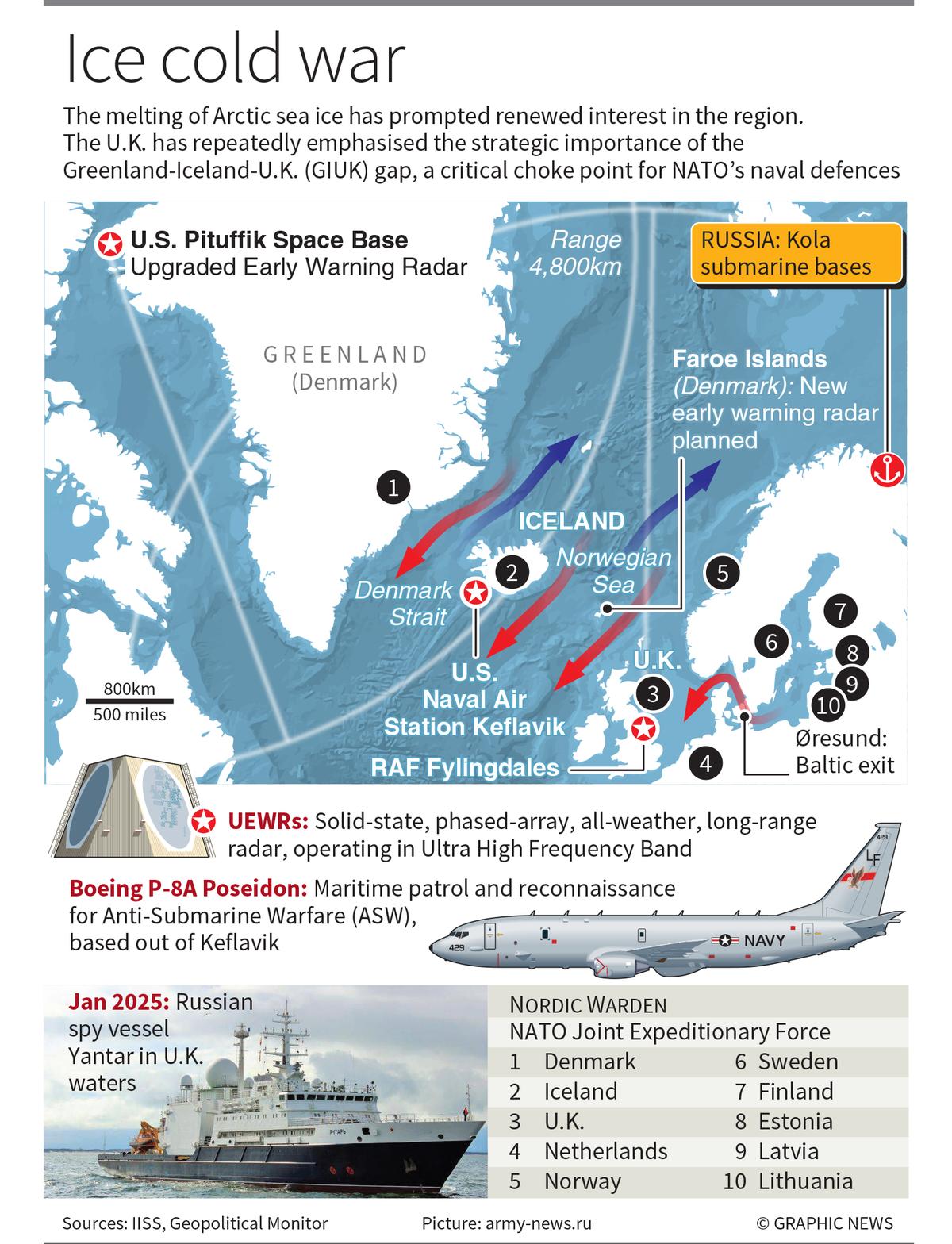
- 02 Apr 2025
In News:
The Arctic region, traditionally isolated due to its extreme climate and thick ice cover, is rapidly emerging as a global geopolitical hotspot. Accelerated melting of ice caps due to climate change has unlocked access to untapped resources and new shipping routes, intensifying competition among major powers.
Resource Wealth and Strategic Significance
- The Arctic holds an estimated 13% of the world’s undiscovered oil and 30% of untapped natural gas (USGS, 2009).
- Rich in rare earth elements, phosphates, and copper, particularly in areas like Greenland.
- Melting ice is opening access to valuable fishing grounds and enabling commercial navigation.
Emerging Shipping Routes
- Northeast Passage (Northern Sea Route): Along Russia’s Arctic coast, connecting Europe and Asia. Reduces distance by ~8,000 km compared to the Suez Canal.
- Northwest Passage: Through Canada’s Arctic Archipelago. Disputed between Canada (claims internal waters) and the U.S. (asserts international strait).
These routes offer significant economic and strategic advantages, including reduced dependency on traditional chokepoints like the Suez Canal.
Governance: The Arctic Council
The Arctic Council, established by the 1996 Ottawa Declaration, is the key intergovernmental forum for Arctic affairs.
Members (8 Arctic States):
- Canada, Denmark (via Greenland), Finland, Iceland, Norway, Russia, Sweden, and the United States
These countries:
- Control Arctic land territories
- Have sovereign rights over resources within their Exclusive Economic Zones (EEZs)
Permanent Participants:
- Six Indigenous groups representing Arctic communities.
Observers:
- Includes India, China, Japan, UK, among others.
- 13 countries, 13 intergovernmental, and 12 non-governmental organisations.
- All decisions require consensus of member states and consultation with Indigenous groups.
Legal Framework and Territorial Claims
- Governed primarily by UNCLOS (United Nations Convention on the Law of the Sea).
- Allows Arctic states to extend claims beyond their 200-nautical-mile EEZ if they prove natural extension of the continental shelf.
- Russia, Canada, and Denmark have submitted overlapping claims to the Arctic seabed.
Unlike Antarctica, which is demilitarised under international treaties, the Arctic has no such binding legal framework, allowing military infrastructure and territorial claims.
Geopolitical Tensions in the Arctic
Russia’s Military Build-up:
- Largest fleet of Arctic icebreakers, including nuclear-powered vessels.
- Maintains Soviet-era Arctic military bases.
- Planted a flag on the Arctic seabed at the North Pole in 2007.
- In 2022, conducted naval exercises with China, signaling deepening strategic ties.
U.S. Interests:
- Renewed interest in Greenland, citing national security.
- Operates the Pituffik Air Base in Greenland.
- Dispute with Canada over Northwest Passage navigation rights.
NATO’s Arctic Response:
- All Arctic Council members except Russia are NATO allies.
- NATO has increased its Arctic presence post-Ukraine conflict.
- Strategic focus on GIUK (Greenland-Iceland-UK) Gap, a critical naval chokepoint for Russian submarines.
China’s Arctic Aspirations:
- Declared itself a "Near-Arctic State" in 2018.
- Investing in Arctic research and building its first nuclear-powered icebreaker.
- Interested in Russia’s Northeast Passage for trade under the proposed “Polar Silk Road”.
India and the Arctic
India, an observer in the Arctic Council, is closely monitoring developments. It has an Arctic Policy focusing on:
- Scientific research
- Climate and environmental protection
- International cooperation
Understanding "Vibe Coding"
- 02 Apr 2025
In News:
The concept of “vibe coding” gained traction after an OpenAI co-founder demonstrated how modern AI tools can translate intuitive prompts into working code—eliminating the need for in-depth technical expertise.
What is Vibe Coding?
Vibe coding is an intuition-driven, casual approach to programming where users describe what they want to build, and AI generates the code accordingly. Instead of relying on traditional programming logic, this method focuses on the user’s "feel" or intent—making it well-suited for low-stakes, creative, or personal projects.
How It Works:
- Users give natural language prompts describing their desired output (e.g., a simple game, utility, or web page).
- AI models like ChatGPT, Cursor, or Sonnet generate the corresponding code.
- The user then runs or copies the code without necessarily understanding its structure or logic.
Key Features of Vibe Coding:
- Prompt-first, logic-second: Relies on describing functionality rather than coding step-by-step.
- Low technical barrier: No deep knowledge of syntax, algorithms, or frameworks required.
- Trial-and-error approach: Users often accept AI-generated suggestions without critical review.
- Heavy dependence on AI: Debugging and improvements rely primarily on AI assistance.
- Limited focus on performance/security: Generated code may lack optimization or safeguards.
Why Vibe Coding Matters:
- Democratizes coding: Makes programming accessible to those without formal training.
- Fuels creativity: Encourages playful experimentation and rapid prototyping.
- Saves time for developers: Ideal for automating small, repetitive tasks.
- Inspires new learners: Attracts non-traditional audiences into tech through approachable tools.
- Useful for quick builds: Ideal for weekend hacks, personal utilities, or mock-ups.
Alzheimer’s Disease
- 02 Apr 2025
In News:
A new drug, Gantenerumab, has shown potential in slowing the progression of early-onset Alzheimer’s by significantly reducing the accumulation of amyloid plaques, a major indicator of the disease.
Alzheimer’s Disease Overview
- Alzheimer’s disease is a progressive neurodegenerative disorder, primarily impairing memory, thinking, and reasoning.
- It is the most common cause of dementia, accounting for 60–80% of all dementia cases globally.
- The disease is marked by the accumulation of amyloid beta plaques, which interfere with neuronal communication and trigger brain inflammation, eventually leading to cell death.
What is Early-Onset Alzheimer’s Disease (EOAD)?
- EOAD affects individuals below 65 years of age, comprising 5–10% of total Alzheimer’s cases.
- It progresses more rapidly and often strikes during a person’s prime working years.
- EOAD is strongly linked to genetic mutations in three genes: APP, PSEN1, and PSEN2, which result in overproduction of amyloid beta proteins.
Amyloid Plaques: The Disease Hallmark
- Amyloid plaques are clusters of misfolded amyloid beta proteins.
- These plaques disrupt brain function, contribute to inflammation, and kill neurons.
- They are central to the amyloid hypothesis, which posits that amyloid accumulation is a primary cause of Alzheimer’s progression.
Gantenerumab: A Potential Breakthrough
- Gantenerumab is a monoclonal antibody developed to target and eliminate amyloid beta plaques in the brain.
- It can cross the blood-brain barrier, a key obstacle in neurological drug delivery.
- The drug binds to amyloid plaques, signaling microglial cells (brain's immune cells) to break down and clear these plaques.
- This action may slow cognitive decline in early stages of the disease.
Recent Clinical Trial Findings
- A randomized, placebo-controlled trial involved 73 participants with rare inherited EOAD mutations.
- A subgroup of 22 asymptomatic participants showed reduced risk of symptom development from nearly 100% to 50% over eight years.
- Brain imaging confirmed a significant reduction in amyloid buildup.
Limitations and Risks
- Amyloid-related imaging abnormalities (ARIA) were observed in 53% of trial participants:
- Brain swelling in 30%
- Microbleeds in 27%
- Iron deposits in 6%
- No major hemorrhages or deaths occurred, but side effects necessitate regular monitoring.
- The cognitive benefits were modest, and the drug is costly to produce, raising affordability concerns.
- The study had a small sample size and focused only on a rare genetic subset of EOAD.
Significance and Future Prospects
- Gantenerumab supports the amyloid hypothesis, alongside other drugs like lecanemab and donanemab.
- Despite its discontinuation in 2022 due to limited efficacy, new findings may revive interest in its development.
- The trial highlights the critical importance of early diagnosis and biomarker testing for timely therapeutic intervention.
Strength of Cloud Bands and their role in Indian Monsoon
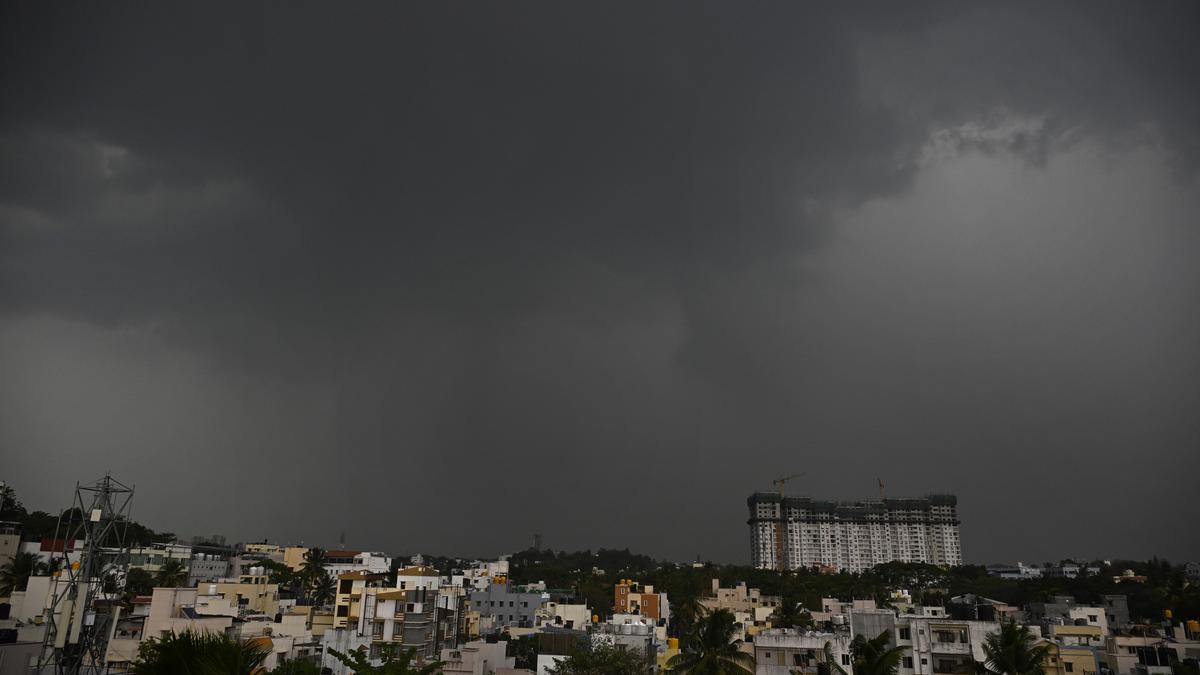
- 01 Apr 2025
In News:
A recent study by the Indian Institute of Science (IISc) has shed new light on the role of equatorial cloud bands in determining the movement and intensity of monsoon rainfall over India. These insights could enhance the accuracy of seasonal and sub-seasonal climate models.
Key Findings of the Study:
- Importance of Cloud Band Strength:
- The northward movement of monsoon cloud bands—crucial for triggering wet spells in India—is not guaranteed. Only strong cloud bands originating near the equator successfully propagate northward.
- Weak cloud bands fail to initiate wet spells, countering earlier assumptions that all cloud bands move north regardless of strength.
- Role of BSISO:
- The Boreal Summer Intraseasonal Oscillation (BSISO) governs alternating wet and dry spells during the monsoon. It helps transport convection (cloud activity and heat) from the Indian Ocean towards the Indian subcontinent.
- The size and strength of the cloud band influenced by BSISO determine the duration and intensity of wet phases.
- Air-Sea Interaction:
- Moisture buildup and wind strength, both vital for rain formation, are heavily influenced by air-sea interaction in the equatorial Indian Ocean.
- Strong coupling between the ocean and atmosphere enhances atmospheric moisture, aiding cloud formation and monsoon intensity.
- Impact of Climate Change:
- With rising global temperatures, background atmospheric moisture is expected to increase.
- This is projected to lead to a 42%–63% rise in rainfall during wet spells across India and surrounding seas in the future.
- Modeling and Forecasting:
- The study's findings help address gaps in current climate models, improving forecasts for monsoon rains at both seasonal and sub-seasonal scales.
What is BSISO?
- A large-scale monsoon phenomenon active between June and September.
- Alternates between active (rainy) and break (dry) spells.
- Modulated by global oceanic phenomena such as:
- El Niño: Weakens northward propagation of BSISO.
- La Niña: Enhances BSISO movement towards India.
Key Facts About Indian Monsoon:
- Monsoon Etymology: Derived from Arabic "mausim", meaning season.
Types of Monsoons in India:
- Southwest Monsoon (June–September):
- Also called the advancing monsoon.
- Brings 80% of India's annual rainfall.
- Driven by low pressure over the Indian subcontinent and high pressure over the Indian Ocean.
- Northeast Monsoon (October–December):
- Known as the retreating monsoon.
- Affects southeastern coastal regions, especially Tamil Nadu and Andhra Pradesh.
Key Influencing Factors:
- Inter-Tropical Convergence Zone (ITCZ): Moves northward in summer, attracting moisture-laden winds.
- Tibetan Plateau Heating: Generates the Tropical Easterly Jet, enhancing monsoon inflow.
- Somali Jet: Strengthens monsoon winds from the Arabian Sea.
- Indian Ocean Dipole (IOD):
- Positive IOD (warmer west): Enhances monsoon.
- Negative IOD (warmer east): Weakens it.
- ENSO (El Niño–Southern Oscillation):
- El Niño: Linked with weaker monsoons and droughts.
- La Niña: Associated with stronger and prolonged monsoon spells.
Maasai Tribe and the Carbon Credit Conflict in Tanzania
- 01 Apr 2025
In News:
The Maasai, a prominent indigenous community in East Africa, are resisting international carbon credit projects in Tanzania. They fear these initiatives may lead to land dispossession and the erosion of their traditional pastoralist lifestyle.
Who are the Maasai?
- Ethnic Group: Semi-nomadic pastoralists found primarily in Tanzania and Kenya, especially in the Great Rift Valley and semi-arid savannas.
- Language:Maa (Eastern Sudanic branch, Nilo-Saharan family).
- Cultural Identity:
- Known for distinct attire, beadwork, and warrior traditions.
- Socially organized through patrilineal clans, divided into moieties and age-sets (from junior warriors to senior elders).
- Youth (Morans) undergo bush training for resilience and discipline.
- Livelihood:
- Rely on cattle, sheep, and goats for milk, meat, and blood.
- Practice transhumance, moving seasonally for water and pasture.
- Reside in kraals—circular enclosures with mud-dung houses and thorn fences.
Carbon Credit Projects and Rising Tensions
- Projects Involved:
- Longido and Monduli Rangelands Carbon Project (Volkswagen ClimatePartners).
- Resilient Tarangire Ecosystem Project (The Nature Conservancy).
- Area Affected: Nearly 2 million hectares of Maasai grazing land.
- Project Goal: Store soil carbon and sell offsets to polluters globally.
Maasai Concerns and Resistance
- Forced Land-Use Changes:Carbon projects impose structured rotational grazing (e.g., 14-day grazing cycles), disrupting centuries-old mobility practices.
- Lack of Consultation:Research by the Maasai International Solidarity Alliance (MISA) shows widespread violations of Free, Prior, and Informed Consent (FPIC).
- Women and youth were excluded from consultations.
- Some communities unknowingly entered 30–40 year contracts.
- Payments were often tokenistic and poorly explained.
- Economic and Legal Risks:
- Villages lack clarity on revenue shares from credits.
- Contracts lock communities into rigid systems despite village land-use plans being reviewed every 10 years.
- Intermediaries—not end buyers—dominate the agreements.
Government and Global Dimensions
- Tanzania’s Push:The government expects $1 billion/year from carbon credit sales and is streamlining the sector through the National Carbon Monitoring Centre (NCMC).
- Global Scrutiny:
- Investigations reveal over 90% of rainforest offsets by some certifiers are ineffective.
- Soil carbon in semi-arid areas (like Maasai rangelands) is volatile and hard to quantify.
Grassroots Resistance and Legal Action
- Cultural and Spiritual Attachment:Land is integral to Maasai identity, beyond livestock rearing—it holds spiritual and cultural significance.
- Legal Mobilization:Young warriors, once defending livestock from predators, now advocate legally to protect ancestral land.MISA, formed after violent evictions in 2022 (Ngorongoro, Loliondo), spearheads resistance against exploitative schemes.
India–Myanmar Free Movement Regime (FMR)
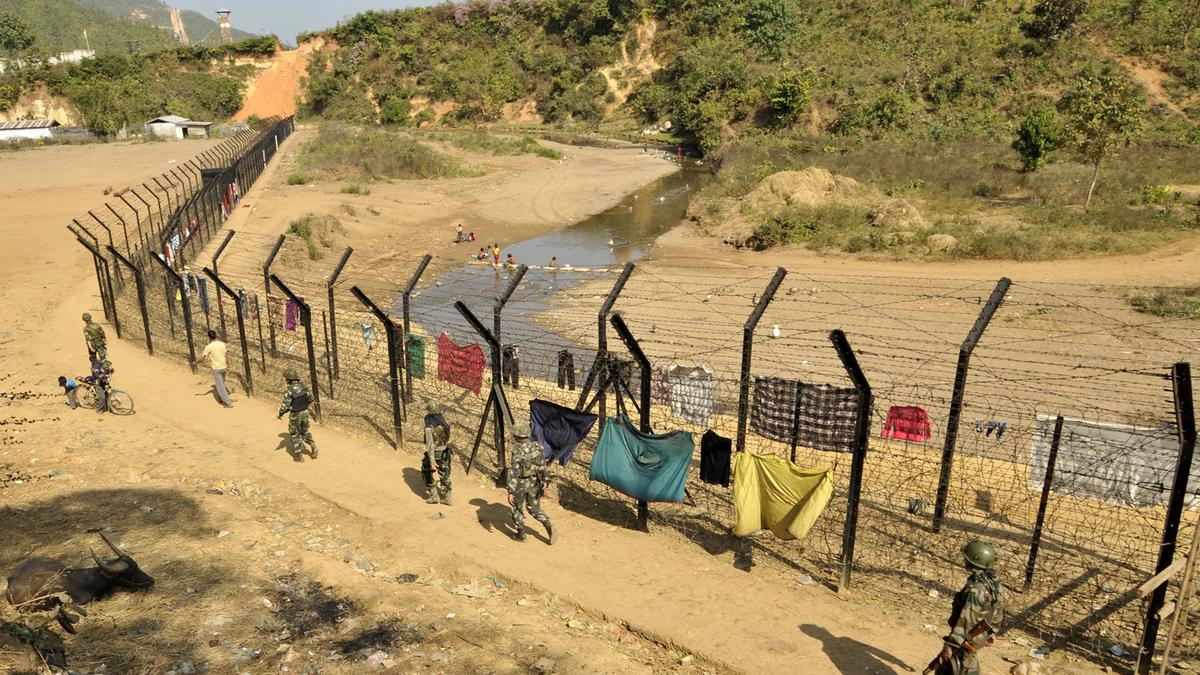
- 01 Apr 2025
In News:
In February 2024, Union Home Minister Amit Shah announced the scrapping of the Free Movement Regime (FMR) along the India–Myanmar border, citing national security concerns. The decision is reportedly influenced by the former Manipur Chief Minister, who blamed unregulated cross-border movement for ethnic violence in Manipur. However, the decision has not yet been implemented, and no formal notification or bilateral agreement has been issued. Mizoram and Nagaland have opposed the move, highlighting socio-cultural concerns.
What is the Free Movement Regime (FMR)?
- Introduced: 1968
- Current Limit: Movement up to 16 km on either side of the 1,643 km-long India–Myanmar border
- Eligibility: Members of hill tribes on both sides with a border pass valid for one year, allowing stay for up to 2 weeks per visit
- Purpose:
- Preserve historical, cultural, and familial ties between border communities
- Facilitate local trade and people-to-people exchanges
- Complement India’s Act East Policy by promoting cross-border cooperation
- Regulations: Initially 40 km (1968), reduced to 16 km (2004), with tighter checks from 2016
- Formal Implementation: 2018
Impact on Border Communities:
- Deep Ethnic and Familial Ties: Many communities across Mizoram, Manipur, Nagaland, and Arunachal Pradesh share ancestry and cultural links with communities in Myanmar, such as the Chin and Mizo peoples.
- Local Trade & Livelihoods: FMR supports livelihoods through informal trade. Its removal could disrupt economic dependence in these remote areas.
- Perceived as Redundant: Locals report that cross-border interaction predates FMR and continues with or without official sanction.
Security Concerns and Contraband Issues:
- Despite increased military presence post the Border Area Development Programme (BADP) in the 1980s, smuggling of contraband such as drugs, gold, and areca nuts continues unabated.
- Centre’s View: FMR allegedly facilitates illegal migration, drug trafficking, and infiltration contributing to internal instability.
- Local View: Scrapping the FMR alone won’t stop cross-border crime without comprehensive border management and community engagement.
Challenges with Border Fencing:
- Difficult Terrain: The mountainous and forested landscape makes border fencing logistically and financially challenging.
- Social Sensitivity: Fencing may provoke protests as the border cuts across ethnically unified communities.
- Unified Homeland Demand: Risk of reviving separatist sentiments, especially in regions like Eastern Nagaland, where demands for Frontier Nagaland exist.
Legal and Strategic Concerns:
- The Forest (Conservation) Amendment Act, 2023 allows the use of forest land within 100 km of international borders for strategic projects, raising concerns about displacement and loss of ancestral lands.
Way Forward:
- Balanced Approach Needed:
- Any changes must consider security needs as well as local sensitivities.
- Community engagement and consultation are crucial to avoid unrest.
- Alternatives to Fencing:
- Strengthen customs and intelligence units along the border.
- Promote legal trade channels to formalize economic activities.
- Enhance monitoring mechanisms without disrupting historical ties.
- Long-Term Strategy:
- Address instability in Myanmar, Chinese influence, and Golden Triangle drug trade through coordinated regional efforts.
- Align border governance with India’s Act East Policy, focusing on connectivity and cultural diplomacy.
Mount Kenya’s Rapid Glacier Retreat due to Climate Change
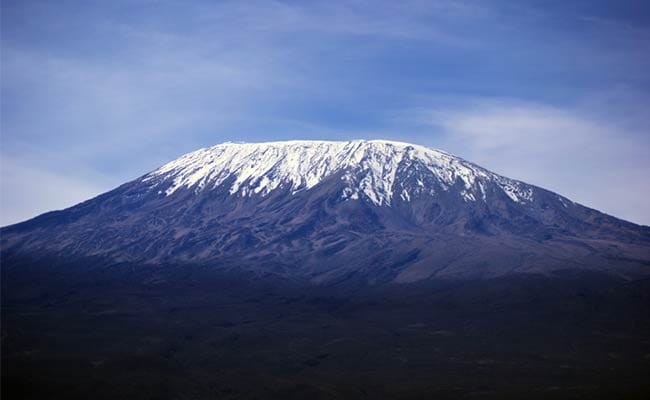
- 01 Apr 2025
In News:
Mount Kenya, Africa’s second-highest peak after Kilimanjaro, is witnessing a dramatic loss of its glacial cover due to accelerating climate change. Scientists warn that the mountain may become completely ice-free by 2030.
Key Findings:
- The Lewis Glacier, once one of the most prominent ice bodies on Mount Kenya, has experienced substantial shrinkage.
- A 2011 study by the University of Innsbruck (Austria) reported a 90% volume loss in Lewis Glacier between 1934 and 2010.
- A 2023 satellite analysis revealed that only 4.2% of the ice present in 1900 remains today.
About Mount Kenya:
- Location: Central Kenya, just south of the Equator.
- Elevation:5,199 meters (17,058 feet) at its highest peak, Batian.
- Geological Nature: An extinct stratovolcano, heavily eroded over millennia.
- Glaciers: Includes Lewis Glacier and Tyndall Glacier, among the last surviving tropical glaciers in Africa.
- UNESCO Status: Declared a World Heritage Site in 1997 for its ecological and cultural value.
Exercise PrachandPrahar (2025)

- 01 Apr 2025
In News:
Exercise PrachandPrahar was a tri-service integrated multi-domain military exercise conducted by the Indian Armed Forces in the high-altitude terrain of Arunachal Pradesh, along the Northern Borders, specifically under the Eastern Army Command.
Timeline:
- Held: March 25–27, 2025
- Preceded by:Exercise PoorviPrahar (November 2024), which focused on integrated aviation asset application.
Objective:
To validate integrated operational capabilities of the Army, Navy, and Air Force, and enhance India's preparedness for future warfare scenarios along the 3,488-km long Line of Actual Control (LAC) with China.
Key Highlights:
- Location: High-altitude Himalayan terrain, eastern sector of the LAC in Arunachal Pradesh.
- Forces Involved:
- Indian Army (including Special Forces)
- Indian Air Force (IAF)
- Indian Navy
Major Components:
- Surveillance and Domain Awareness:
- Long-range surveillance aircraft (IAF)
- Maritime domain awareness aircraft (Navy)
- Helicopters and UAVs
- Space-based assets
- Precision Strike Capabilities:
- Fighter aircrafts
- Long-range rocket systems
- Medium artillery
- Armed helicopters
- Swarm drones
- Loitering munitions
- Kamikaze drones
- Operational Environment:
- Simulated electronic warfare and contested conditions.
- Focus on jointness, precision, and rapid response.
Strategic Importance:
- Demonstrated seamless command, control, and coordination among the three services.
- Validated the ability to conduct multi-domain operations (MDO) in challenging terrain.
- Reinforced India’s technological edge and combat readiness along strategic frontiers.
UK–Mauritius Deal on Chagos Islands
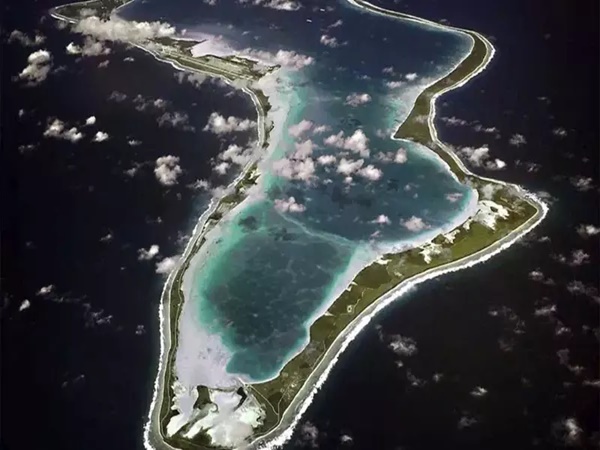
- 25 May 2025
Background:
The Chagos Archipelago, a remote group of over 60 islands in the Indian Ocean, has been at the center of a decades-long sovereignty dispute between the United Kingdom and Mauritius. The UK separated the islands from Mauritius in 1965, three years before Mauritius gained independence, and established the British Indian Ocean Territory (BIOT).
In the 1970s, the UK allowed the United States to build a military base on Diego Garcia, the largest island in the archipelago. The local Chagossian population was displaced, leading to international criticism and legal challenges.
Recent Development
In May 2025, the UK government, led by Prime Minister Keir Starmer, agreed to transfer sovereignty of the Chagos Islands to Mauritius. The agreement follows the 2019 advisory opinion of the International Court of Justice (ICJ) and United Nations resolutions urging the UK to end its colonial administration of the islands.
Key Provisions of the Treaty
- Sovereignty Transfer: Mauritius regains control over the Chagos Archipelago, including Diego Garcia.
- Lease Agreement: The UK will lease back Diego Garcia from Mauritius for 99 years, paying approximately:
- £101–136 million annually, totaling over £3 billion ($4 billion) across the lease term.
- Strategic Base Retained: The US-UK military base on Diego Garcia will continue operating. It is vital for counter-terrorism, surveillance, and regional stability in South Asia, the Middle East, and East Africa.
Geographical Significance
- The Chagos Islands lie about 500 km south of the Maldives and are part of the Chagos–Laccadive Ridge.
- It is the southernmost archipelago of the ridge and is located over 9,000 km southeast of the UK.
- Major islands: Salomon Islands, PerosBanhos, Diego Garcia.
Strategic and Military Importance
- Diego Garcia serves as a key US military outpost, supporting operations in multiple global regions.
- Described as an “almost indispensable platform”, the base has hosted long-range bombers and surveillance missions.
- Recently, it has been used for nuclear-capable bomber deployments and airstrike missions.
Local and International Reactions
- Mauritius: The agreement is celebrated as the completion of its decolonisation process. Chagossian exiles expressed joy over the chance to return to their ancestral lands.
- India: Strongly supported the sovereignty restoration, aligning with its principles on decolonisation, sovereignty, and territorial integrity. India views the resolution as a positive development for Indian Ocean regional stability.
Criticism and Concerns
- Some UK opposition leaders raised concerns about national security and financial burden on taxpayers.
- There are apprehensions about Mauritius’s close trade ties with China, though the deal includes safeguards against “malign influence.”
Payments Regulatory Board (PRB)

- 25 May 2025
In News:
The Central Government has notified the Payments Regulatory Board Regulations, 2025, replacing the earlier Board for Regulation and Supervision of Payment and Settlement Systems (BPSS) with a new statutory authority — the Payments Regulatory Board (PRB).
About the PRB
- Legal Basis: Constituted under Section 3 of the Payment and Settlement Systems Act, 2007.
- Objective: To regulate and supervise payment systems in India with broader representation and holistic oversight.
Composition (Total: 6 Members)
- Chairperson: Governor of the Reserve Bank of India (RBI)
- Ex-Officio Members:
- Deputy Governor of RBI in charge of the Department of Payment and Settlement Systems (DPSS)
- One RBI official nominated by the RBI Central Board
- Government Nominees:Three members nominated by the Central Government (previous BPSS had none)
Other Key Features:
- Expert Consultation: PRB can invite experts from fields like law and IT as permanent or ad hoc members.
- Eligibility Criteria:
- Members must be below 70 years of age
- Should not hold any legislative office or have material conflicts of interest
- Governance:
- Board meets at least twice a year
- Decisions are by majority vote; in case of a tie, the Chairperson (or Deputy Governor) casts the deciding vote.
- Delegation: PRB can delegate functions to RBI officers or sub-committees.
Institutional Support
- The PRB will be supported by the RBI’s DPSS, which will report directly to the board.
Significance of the Reform
- Marks a structural reform in the regulation of India’s rapidly growing payments ecosystem.
- Enhances government oversight through its nominees.
- Aims to improve coordination among various departments (e.g., fintech, digital payments).
- Seeks to provide uniform and consolidated regulation across diverse payment systems.
Acharya Charaka and Sage Sushruta
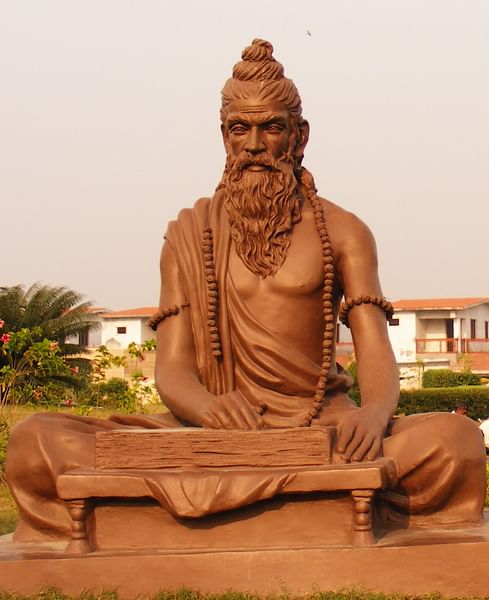
- 25 May 2025
In News:
The Vice-President of India recently inaugurated the statues of Acharya Charaka and Sage Sushruta at Raj Bhavan, Goa, to honour India's ancient medical heritage rooted in Ayurveda and surgery.
Acharya Charaka – Father of Indian Medicine
- Period: Circa 100 BCE – 200 CE
- Region: Associated with Taxila, under the Kushan emperor Kanishka.
- Key Contribution:
- Originally based on the Agnivesha Samhita, later revised and compiled by Charaka.
- Focused on internal medicine (Kayachikitsa).
- Discussed physiology, disease pathology, diagnosis, and therapeutic techniques.
- Introduced the concept of three doshas: Vata, Pitta, Kapha—the basis for diagnosis and treatment in Ayurveda.
- Provided early insights into embryology (Garbha Vigyan) and preventive healthcare.
- Stressed medical ethics, such as confidentiality, non-maleficence, and the moral duties of a physician.
- Emphasized the importance of diet, lifestyle, and environmental factors in health.
- The Charaka Samhita is part of the B?hatTrayi (Great Trilogy) of Ayurveda and was expanded by D??habala.
- Translated into Arabic, Latin, and other languages, reflecting its global medical influence.
Sage Sushruta – Father of Surgery
- Period: Circa 600–700 BCE
- Region:Practised in Kashi (Varanasi), likely under King Divodasa.
- Key Contribution:
- A pioneering treatise in surgery and medical science.
- Detailed 300+ surgical procedures and over 100 surgical instruments.
- Innovations include rhinoplasty (nasal reconstruction), skin grafts, cataract surgery, and caesarean sections.
- Explained fractures, dislocations, use of anaesthesia, and surgical training.
- Emphasized dissection-based anatomy, practical education, and simulation for surgical learning.
- Covered areas like public health, toxicology, pediatrics (Kaumarbhritya), and neonatal care.
- Integrated scientific observation, hygiene, and evidence-based methods long before modern systems.
Collective Significance:
- Both are part of the B?hatTrayi (Charaka Samhita, Sushruta Samhita, and Ashtanga Hridaya), forming the backbone of Ayurvedic literature.
- Their work laid the foundation for:
- Holistic medicine and ethical healthcare practice.
- Advanced understanding of human physiology and embryology.
- Scientific surgery, centuries ahead of global developments.
- Contributions to child health (Kaumarbhritya) and public hygiene.
- Their texts influenced Arab and European medicine through translations such as Kitab-i-Susrud.
Asian Productivity Organization (APO)

- 25 May 2025
In News:
India has officially taken over the Chairmanship of the Asian Productivity Organization (APO) for the 2025–26 term during the 67th Governing Body Meeting.
About APO:
- Type: Regional intergovernmental organization.
- Established:1961.
- Headquarters:Tokyo, Japan.
- Membership: 21 member economies from the Asia-Pacific region, including India, Japan, Iran, Indonesia, Vietnam, Philippines, South Korea, Singapore, and others.
- India:Founding member of the APO.
Key Objectives:
- Enhance productivity in member countries through mutual cooperation.
- Foster sustainable and inclusive socioeconomic development.
- Promote innovation-led growth across industry, agriculture, services, and public sectors.
Core Functions:
- Policy Advisory:Assists governments in designing national productivity strategies.
- Capacity Building:Conducts training programs, workshops, and research initiatives to boost productivity skills.
- Centres of Excellence:Facilitates innovation and best practices sharing among members.
- Green Productivity:Promotes environmentally sustainable growth models.
- Digital & Innovation Ecosystem:Encourages digital transformation and entrepreneurship through regional collaboration.
Organizational Structure:
- Governing Body:The apex decision-making entity; sets strategic direction and reviews performance annually.
- National Productivity Organizations (NPOs):Act as nodal agencies coordinating with the APO at the national level.
- Secretariat:Based in Tokyo, headed by a Secretary-General, manages daily operations.
Significance for India:
- India’s chairmanship marks a step forward in shaping regional productivity policies and highlights India’s commitment to sustainable development and economic cooperation in the Asia-Pacific.
State of the World’s Animal Health Report 2025
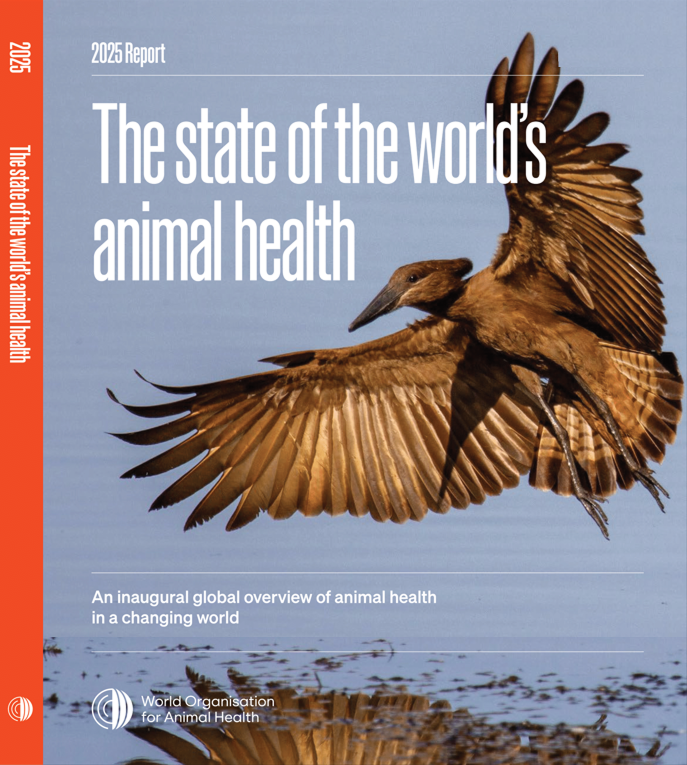
- 25 May 2025
In News:
Infectious animal diseases are spreading to previously unaffected regions and species, with nearly half (47 per cent) capable of zoonotic transmission or spreading between animals, according to the inaugural State of the World’s Animal Health report released by the World Organisation for Animal Health (WOAH).
Key Details:
Published by:
- World Organisation for Animal Health (WOAH), formerly OIE (Office International des Epizooties), founded in 1924, headquartered in Paris.
- Recognized by the WTO for setting global standards on animal health and zoonotic disease control.
Objective of the Report:
- To provide a comprehensive global assessment of animal health trends, risks, and disease outbreaks.
- To promote a One Health approach, linking animal health with human health and environmental sustainability.
Major Findings:
1. Rising Zoonotic Threats:
- 47% of animal diseases reported between 2005–2023 have zoonotic potential (can spread from animals to humans).
- These include avian influenza, African swine fever (ASF), foot-and-mouth disease (FMD), and Peste des Petits Ruminants (PPR).
2. Geographic Expansion of Diseases:
- Diseases are emerging in new regions and species due to climate change, global trade, and ecosystem disruptions.
- Example: ASF jumped over 1,800 km to reach Sri Lanka in 2024, marking the year's most significant disease leap.
- PPR re-emerged in Europe, traditionally limited to developing regions.
3. Avian Influenza Evolution:
- Over 630 million birds culled or lost in 20 years.
- In 2024, more outbreaks were reported in non-poultry species (55 countries) than poultry (42 countries).
- Mammal infections doubled, raising concerns of cross-species transmission.
4. Other Notable Disease Events:
- Germany faced its first FMD outbreak since 1988.
- New World Screwworm, a parasitic fly, re-emerged in Mexico and Nicaragua.
- Bluetongue virus reported in 23 countries with over 3,500 cases in 2024.
Antimicrobial Resistance (AMR): A Global Threat
Key Data:
- By 2050, AMR may cause:
- Loss of livestock threatening food security for 2 billion people.
- $100 trillion global economic loss.
Drivers:
- Indiscriminate use of antibiotics in livestock, aquaculture, and agriculture.
- Around 20% of countries still use antimicrobials as growth promoters, including high-priority drugs like colistin and enrofloxacin.
Trends:
- Global antibiotic use in animals fell by 5% (2020–2022).
- Europe: 23% decline.
- Africa: 20% decline.
Recommendations by WOAH:
- Enhance vaccine access and distribution, especially in low-income countries.
- Strengthen Veterinary Services, surveillance, and biosecurity.
- Improve hygiene and disease prevention to reduce antibiotic dependence.
- Promote international cooperation under the One Health framework.
- Ban or regulate the use of antibiotics as growth promoters.
About WOAH:
- Intergovernmental organization with 183 member countries, including India.
- Monitors, controls, and reports on animal diseases to ensure safe trade, public health, and food security.
- Partner in Global Action Plan on AMR with WHO and FAO.
Indian Initiatives on AMR & Animal Health:
- National Action Plan on AMR (2017–2021) – Focus on awareness, surveillance, infection control, and R&D.
- FSSAI guidelines to regulate antibiotic residues in food of animal origin.
- National Animal Disease Control Programme (NADCP) – Focus on vaccination against FMD and Brucellosis.
Keezhadi Excavations
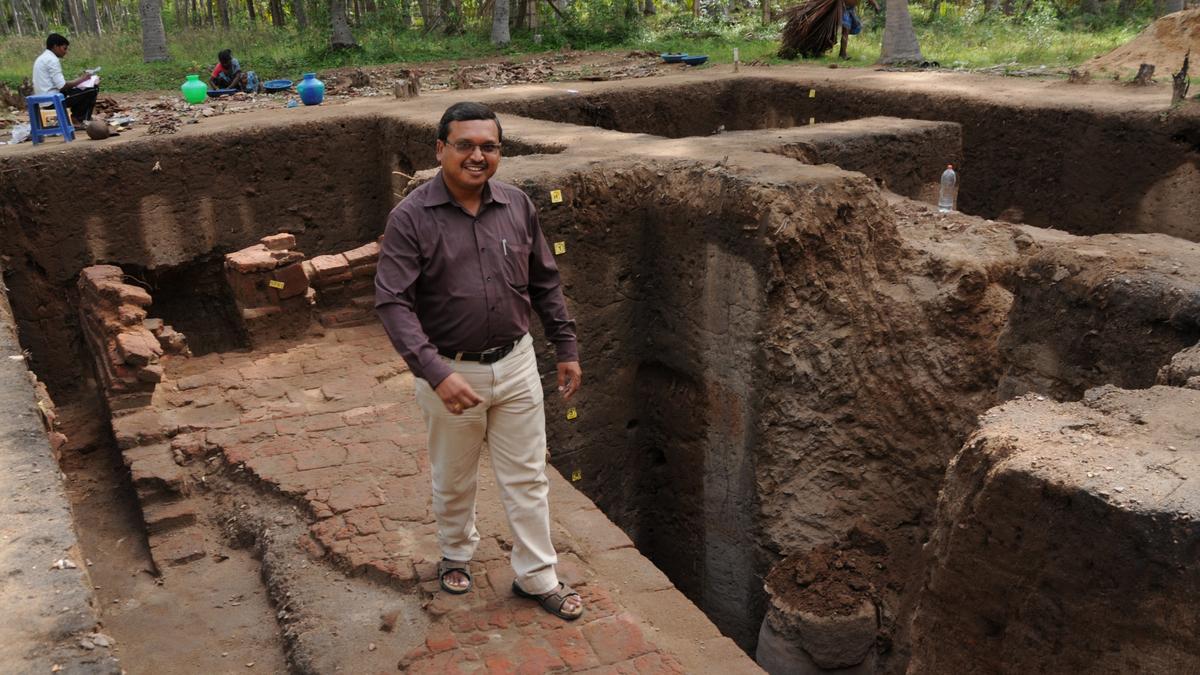
- 24 May 2025
In News:
The Keezhadi archaeological site, located near Madurai along the Vaigai River in Tamil Nadu’s Sivaganga district, is a major site of cultural and historical significance. It offers compelling evidence of an urban, literate, and industrialized Tamil civilization dating back to the Sangam Age.
Background and Discovery
- Discovered: Surveys in 2013–14; Excavations began in 2015.
- Excavating Agencies: Initially conducted by the Archaeological Survey of India (ASI) and later by the Tamil Nadu State Archaeology Department.
- Excavated Area: Only 1 out of 100 acres has been explored; over 4,000 artefacts recovered.
Significant Findings
- Carbon Dating (AMS) of charcoal: Indicates urban habitation existed by 200 BCE.
- Key Discoveries: Brick structures, ring wells, pottery with Tamil-Brahmi inscriptions, beads, graffiti, water storage facilities, and a large decorative pot unique to the region.
- Artefacts suggest links with North India and Western trade networks.
Cultural and Historical Significance
- Suggests early urbanization in South India, independent of northern influence.
- Supports theories of a pre-Sangam urban Tamil culture.
- Establishes Keezhadi as a centre of literacy, trade, and craftsmanship.
- Mention of nearby settlements like Manalur and Konthagai in Tamil classics such as Tiruvilayadal Puranam strengthens the site's literary links.
Sangam Period Context
- Spanned approximately 3rd century BCE to 3rd century CE.
- Tamil academies or ‘Sangams’ under the Pandya dynasty produced extensive literature.
- Notable texts: Tolkappiyam, Ettuthogai, Pattupattu, Padinenkilkanakku, and epics like Silappadikaram, Manimekalai, and CivakaCintamani.
- Literature depicts advanced socio-political systems, agriculture, trade, and maritime activities.
Current Issues and ASI Involvement
- The excavation report prepared by archaeologist Amarnath Ramakrishna (submitted in January 2023) has been returned by ASI for revision to ensure:
- Accurate period classification.
- Better stratigraphic and cartographic details.
- Consistency in scientific dating and layer mapping.
- ASI has flagged the need for clearer mapping, missing illustrations, and precise scientific justification for dating claims, especially for Period I (8th to 5th century BCE).
Controversy and Criticism
- Concerns have been raised over delays in publishing excavation reports.
- Critics highlight a perceived bias in the handling of southern archaeological sites, pointing to similar delays with the Adichanallur site report.
- Experts stress the importance of transparent and timely reporting to enhance historical understanding.
National Centre for Polar and Ocean Research (NCPOR)
- 24 May 2025
In News:
To mark its 25th anniversary, the Union Minister of Earth Sciences inaugurated two landmark facilities—Polar Bhavan and Sagar Bhavan—at the NCPOR campus in Vasco da Gama, Goa.
About NCPOR
- Established: 25 May 1998 (originally as the National Centre for Antarctic and Ocean Research – NCAOR).
- Status: Autonomous R&D institute under the Ministry of Earth Sciences (MoES).
- Headquarters: Vasco da Gama, Goa.
- Governing Body: Includes 13 members; the Secretary of MoES serves as the ex-officio Chairman.
Mandate and Key Functions
- Polar Research Leadership:
- Manages India's scientific stations:
- Antarctica: Maitri and Bharati
- Arctic: Himadri
- Himalayas: Himansh
- Coordinates India’s Antarctic, Arctic, Southern Ocean, and Himalayan expeditions.
- Manages India's scientific stations:
- Oceanic Research:
- Implements projects under the Deep Ocean Mission.
- Conducts Exclusive Economic Zone (EEZ) mapping and continental shelf surveys.
- Explores deep-sea minerals, gas hydrates, and metal sulphides.
- Policy Implementation:
- Supports India’s Arctic Policy (2022) and Indian Antarctic Act (2022):
- Antarctic Act: Provides legal framework for governance and environmental protection via CAG-EP (Committee on Antarctic Governance and Environmental Protection).
- Arctic Policy: Based on six pillars—science, environment, development, connectivity, governance, and capacity building.
- Supports India’s Arctic Policy (2022) and Indian Antarctic Act (2022):
- Scientific Logistics and Collaboration:
- Operates research vessels (e.g., ORV Sagar Kanya).
- Engages in international polar networks and climate monitoring programs.
- Maintains India’s Antarctic Data Centre and conducts climate modelling.
New Facilities at NCPOR
Polar Bhavan:
- Area: 11,378 sq. m | Cost: ?55 crore
- Features:
- Advanced polar and ocean research laboratories
- Science on Sphere (SOS) 3D visualization platform
- Accommodation for 55 scientists
- Conference halls, library
- Home to India’s first Polar and Ocean Museum
Sagar Bhavan:
- Area: 1,772 sq. m | Cost: ?13 crore
- Features:
- Two -30°C ice core laboratories
- +4°C storage units for biological and sediment samples
- Class 1000 clean room for trace metal and isotope studies
Significance for India
- Strengthens India’s strategic presence in polar regions.
- Enhances research capacity in ocean and climate sciences.
- Enables India to fulfill international obligations under polar treaties.
- Promotes science diplomacy and public outreach through the upcoming museum.
Guttala Inscription
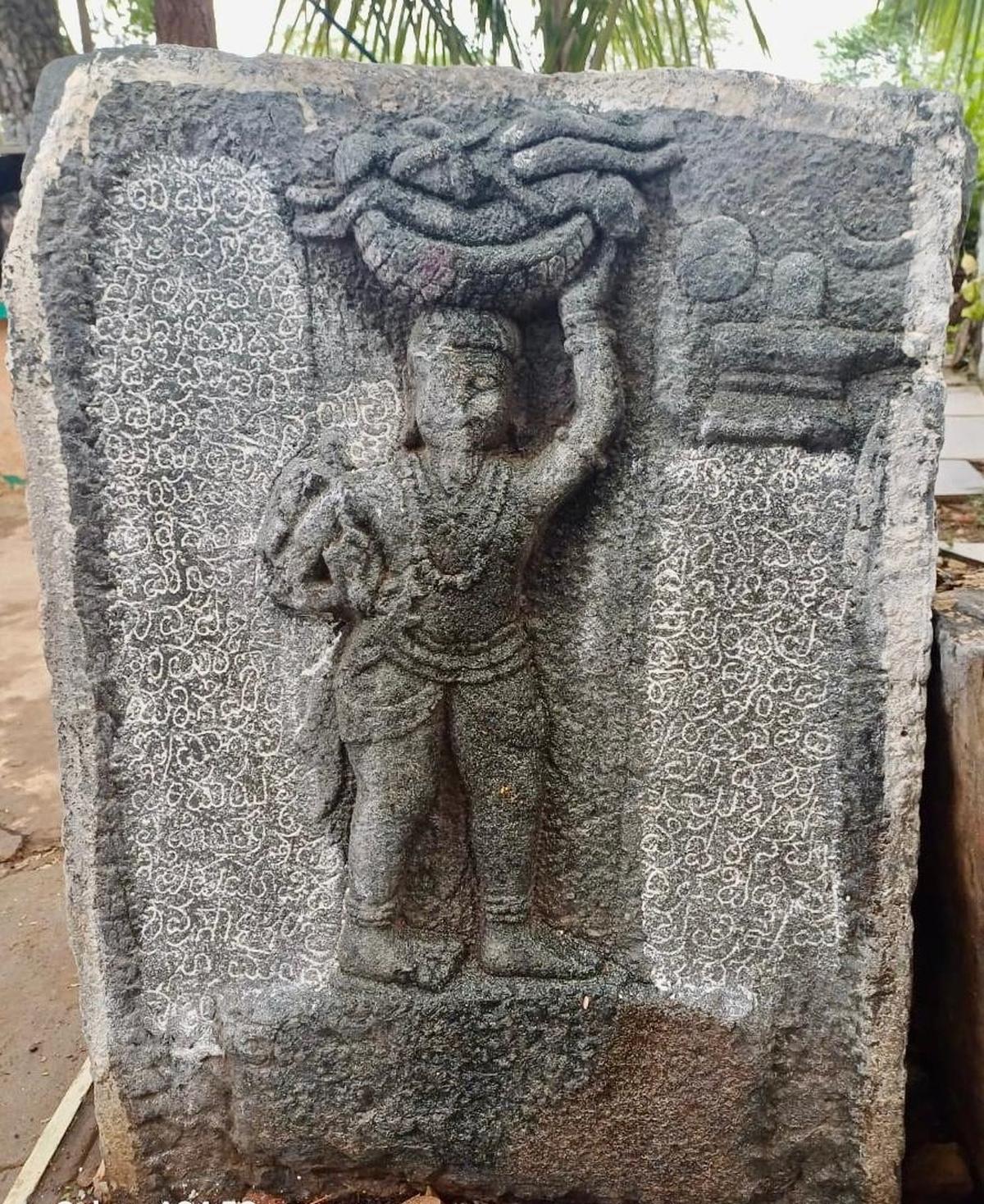
- 24 May 2025
In News:
A rare 16th-century sculptural inscription discovered near the Chandrashekara temple in Guttala village, Haveri district, Karnataka, marks the earliest known epigraphic evidence in India of a large-scale humanitarian disaster caused by a natural calamity—a drought (bara) that claimed 6,307 lives in 1539 CE (Saka 1461, August 18).
Key Features of the Inscription:
- Language and Script: Kannada.
- Medium: Stone slab.
- Depiction: A sculpture showing MarulaihOdeya, the son of NanidevaOdeya, carrying a basket containing dead bodies—representing his act of burying the deceased to earn religious merit for the regional ruler, TimmarasaSvami.
- Religious Context: The burial was conducted after paying homage to Basaveshwara, reflecting the spiritual and ritualistic practices of the time.
- Territorial Reference: Mentions the term "seeme", indicating the existence of local administrative divisions.
Significance:
- First explicit historical record in India of deaths caused by a natural disaster, making it an important source for disaster history and epigraphic heritage.
- Offers textual and visual representation of community response to drought.
- Provides insights into local governance, religious customs, and socio-economic conditions of 16th-century Karnataka.
- Adds depth to the study of historical climate events, with potential to track past climatic patterns and their impact on populations.
Broader Context:
- Inscriptions in India, typically engraved on stone or metal, serve as valuable primary sources for understanding royal decrees, battles, donations, and societal events.
- Other notable Karnataka inscriptions include:
- Maski Edict (3rd Century BCE) – First mention of Emperor Ashoka as "Devanampriya".
- Halmidi Inscription (c. 450 CE) – Oldest Kannada inscription referencing Kadamba king Kakusthavarma.
- Aihole Inscription (634 CE) – Chronicles the military achievements of Pulakeshin II.
Recent Epigraphic Developments:
- The Epigraphy Branch of the Archaeological Survey of India (ASI) discovered and documented over 1,000 inscriptions across India during 2024–25, including more than 100 new finds this year alone.
- These discoveries reinforce the role of epigraphy in reconstructing Indian history, especially in areas lacking detailed literary sources.
Weather Balloons and Global Forecasting Concerns
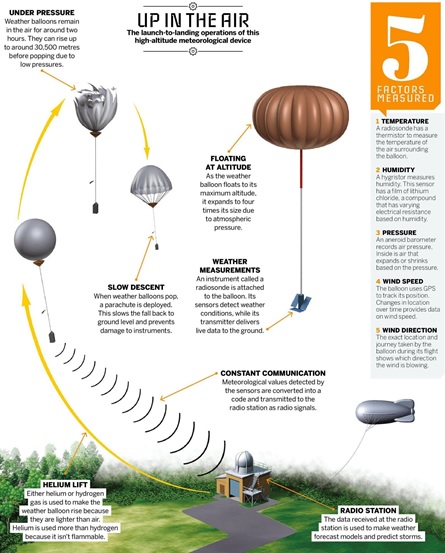
- 24 May 2025
Background:
Weather balloons, crucial for upper atmospheric observations, are facing reduced deployment in the United States due to recent budget cuts. The National Oceanic and Atmospheric Administration (NOAA) has significantly scaled back balloon launches since March 2025 following a 25% budget reduction. This has raised global concerns among meteorologists over the potential decline in forecast accuracy.
What are Weather Balloons?
- Inventor: Léon Teisserenc de Bort (France), first launched them in 1896; discovered the tropopause and stratosphere.
- Composition: Latex balloons filled with helium or hydrogen.
- Altitude: Can ascend up to 1,15,000 feet (35 km) in approximately 2 hours.
- Instrument Carried: Radiosonde – a small device suspended ~66 feet below the balloon that transmits real-time atmospheric data (temperature, pressure, humidity, wind) via radio signals.
- Technology: Modern radiosondes are lightweight, GPS-enabled, and energy-efficient.
Historical Context:
- Initial upper-air measurements in the 18th century used kites with meteorographs.
- Weather balloons replaced kites due to higher altitude capability and improved data reliability.
- The introduction of radiosondes in the 1930s revolutionized weather forecasting by enabling real-time data transmission.
Importance of Upper Air Observations
- Upper atmosphere (>5,000 feet) plays a vital role in generating surface-level weather conditions like rain, storms, and drought.
- Weather balloons help bridge the data gap between surface stations and satellites by offering vertical atmospheric profiles.
- Twice-daily launches at 0000 UTC and 1200 UTC (~5:30 AM and 5:30 PM IST) are globally coordinated at over 900 stations, including 56 in India.
India’s Scenario
- The India Meteorological Department (IMD) conducts routine balloon launches for weather forecasting.
- The National Balloon Facility (NBF) in Hyderabad, jointly managed by ISRO and TIFR, supports high-altitude atmospheric research.
Impact of Reduced Launches
- NOAA’s scaling down has sparked fears of reduced forecast accuracy globally.
- A similar move by Russia in 2015 led to a measurable decline in forecast quality across Europe, highlighting the critical role radiosondes play.
- NOAA plans to replace some balloon data with AI-powered alternatives developed by private firms to reduce costs.
Why Weather Balloons Still Matter in the Satellite Era
- Satellites provide large-scale imagery but lack the granularity of vertical atmospheric data.
- Weather balloons offer crucial insights into lower- and mid-atmospheric layers where storms and climate dynamics form.
- Radiosonde data is essential for calibrating satellite measurements, ensuring reliability in climate modeling and forecasting systems.
Sagar Mein Samman (SMS) Initiative

- 24 May 2025
In News:
The Government of India launched the Sagar Mein Samman (SMS) initiative on International Day for Women in Maritime (18 May), observed by the International Maritime Organization (IMO). The 2025 theme is “An Ocean of Opportunities for Women.”
About the Initiative:
- Objective: To build a gender-equitable maritime workforce by promoting inclusivity, safety, skill development, leadership, and equal opportunities for women across seafaring and shore-based maritime operations.
- Alignment:
- IMO’s gender inclusion mandate.
- UN SDG-5 (Gender Equality).
- India’s Diversity, Equity, and Inclusion (DEI) framework.
- Maritime India Vision 2030 and Maritime Amrit Kaal Vision 2047.
Key Features:
- Structured Policy Roadmap covering:
- Planning & strategy.
- Training & development.
- Research & innovation.
- Governance & compliance.
- Outreach & communications.
- Financial Support: ~2,989 women received assistance since 2014.
- Incentives for Industry: Shipping companies are incentivized to hire women; scholarships support training.
Achievements:
- 649% growth in women seafarers:From 341 in 2014 to 2,557 in 2024.
- Rise in financial aid beneficiaries:From 45 in 2014-15 to 732 in 2024-25.
- Female representation target:12% in technical maritime roles by 2030.
- Increasing employment of Indian women on Indian and foreign-flagged ships.
Recognition and Outreach:
- Women Leaders Honoured: Ten outstanding women were felicitated for their contributions to maritime.
- Focus on awareness campaigns, onshore job facilitation, and leadership opportunities.
Significance:
- Aims to dismantle gender-based barriers and promote inclusive economic growth.
- Reinforces India’s commitment to gender equity as a strategic enabler of maritime sustainability and national development.
- Aligns with global maritime norms and India’s broader commitment to SDGs.
Other Key Maritime Initiatives:
- SAGAR (Security and Growth for All in the Region): Maritime security and regional cooperation.
- Maritime India Vision 2030: Long-term strategy for port-led development and gender inclusion.
BrahMos-NG and Extended Range BrahMos
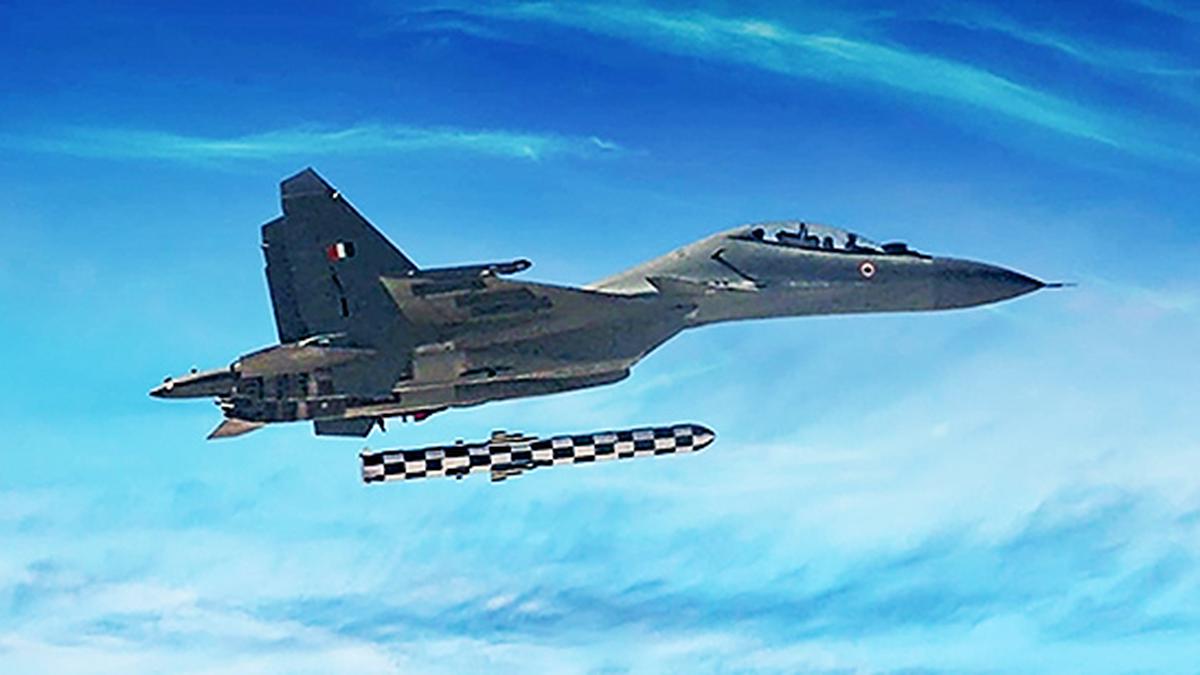
- 23 May 2025
In News:
India is advancing its supersonic missile capabilities with the development of two significant assets:
- The BrahMos-NG (Next Generation) missile—lighter, stealthier, and more versatile.
- The extended-range BrahMos, which pushes the missile’s reach up to 800 km, enhancing India’s strategic depth.
About BrahMos:
- Joint Venture: BrahMos Aerospace (DRDO of India and Russia’s NPO Mashinostroyenia).
- First Induction: 2005 (anti-ship version).
- Name Origin: Combines names of Brahmaputra (India) and Moskva (Russia) rivers.
- Capabilities: Launch from land, sea, sub-sea, and air against land and sea targets.
BrahMos-NG (Next Generation):
A miniaturized, next-gen supersonic cruise missile designed for enhanced operational flexibility and platform compatibility.
Key Features:
- Size & Weight: ~1.33–1.5 tonnes, nearly half the current air-launched BrahMos (2.5–2.65 tonnes).
- Speed: Mach 2.8.
- Range: ~400–450 km; potential for 800 km with future trials.
- Stealth: Lower radar cross-section and advanced stealth design.
- Platforms: Compatible with Su-30MKI, LCA Tejas, Rafale, MiG-29, naval ships, and submarines.
- Launch Options: From air, land vehicles, surface warships, and submarine torpedo tubes.
- Advanced ECCM: Improved resistance against electronic warfare/jamming.
- Precision Targeting: Ideal for land-attack, anti-ship, and underwater combat scenarios.
Strategic Benefits:
- Higher platform density: E.g., a Su-30MKI can carry up to 4 BrahMos-NG missiles; Tejas can carry 2.
- Faster deployment and reload cycles due to reduced size and logistics burden.
- Future-ready design: Modular, stealthy, and agile—ideal for modern warfare.
Extended-Range BrahMos:
- Background: Initial range capped at 290 km under Missile Technology Control Regime (MTCR).
- Post-MTCR Membership: India joined MTCR in 2016, enabling range extension.
- Current Status: Successfully extended to 450 km; testing ongoing for 800 km version.
- Trial Update: Initial flight trial of the 800 km version conducted; more planned.
Operational Highlights:
- Combat Proven: BrahMos was used by the IAF for precision strikes on Pakistani airbases during the 2024 confrontation, demonstrating effective penetration of enemy air defence.
- Deterrence Capability: Former Air Chief Marshal V.R. Chaudhari called BrahMos-NG the IAF’s "primary deterrent weapon".
- Squadron Integration: 222 ‘Tiger Sharks’ squadron in Thanjavur equipped with BrahMos-armed Su-30MKIs.
Financial Fraud Risk Indicator (FRI)
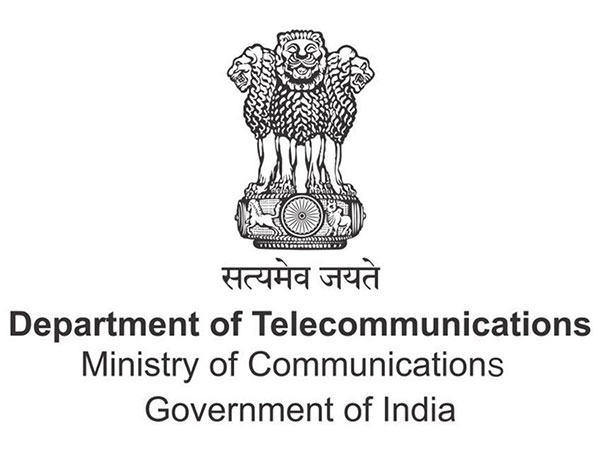
- 23 May 2025
In News:
The Department of Telecommunications (DoT), under the Ministry of Communications, has launched the Financial Fraud Risk Indicator (FRI) to counter the growing menace of cyber-enabled financial frauds, especially those involving mobile numbers.
What is FRI?
The Financial Fraud Risk Indicator (FRI) is a multi-dimensional analytical tool developed under the Digital Intelligence Platform (DIP). It classifies mobile numbers based on their risk level—Medium, High, or Very High—of being associated with financial fraud.
Purpose:
- To provide advance risk intelligence to financial institutions.
- To serve as a pre-transaction validation tool, flagging suspicious mobile numbers involved in digital transactions.
How It Works:
- The classification is based on data inputs from:
- National Cybercrime Reporting Portal (NCRP)
- DoT’s Chakshu facility
- Intelligence from banks and NBFCs
- Risk-tagged mobile numbers are flagged in real-time to stakeholders, including banks, UPI platforms, and payment service providers.
- Acts as a cyber shield, preventing fraudulent digital payments before they occur.
Implementation and Use Cases:
- PhonePe, an early adopter, uses FRI to:
- Block transactions involving "Very High" risk numbers.
- Warn users during transactions with "Medium" risk numbers via its "PhonePe Protect" feature.
- Other UPI giants like Google Pay and Paytm (collectively handling 90% of UPI traffic) are integrating FRI-based alerts.
- Banks have begun introducing transaction delays and alerts to curb cyber fraud using FRI data.
Why FRI is Crucial:
- India lost over ?3,207 crore to approximately 5.82 lakh cyber fraud cases between FY 2020–2024.
- The short operational window of fraudulent mobile numbers makes advance detection vital.
- Common cyber frauds include:KYC scams, UPI frauds, investment scams, digital arrest frauds, and get-rich-quick schemes.
Supporting Mechanisms:
- Digital Intelligence Platform (DIP): Facilitates real-time intelligence sharing between law enforcement and financial institutions.
- Chakshu on Sanchar Saathi: Enables citizens to report suspicious communication.
- Citizen Financial Cyber Fraud Reporting System: Part of I4C, it allows real-time fraud reporting via the 1930 helpline or cybercrime.gov.in.
- E-Zero FIR: Automatically registers FIRs for cybercrime complaints involving more than ?10 lakh.
- Mulehunter (RBI): AI-based tool to identify and track money mule accounts.
Blue Talks
- 23 May 2025
In News:
Recently, India successfully hosted the Second Blue Talks in New Delhi, organised by the Ministry of Earth Sciences (MoES) in collaboration with the Embassies of France and Costa Rica. This high-level consultation platform aims to contribute to the upcoming 3rd United Nations Ocean Conference (UNOC3) scheduled from June 9–13, 2025 in Nice, France.
About Blue Talks
- Purpose: A multilateral platform for dialogue among governments, scientists, civil society, and stakeholders to promote the sustainable use of ocean resources and accelerate progress on Sustainable Development Goal (SDG) 14 – Life Below Water.
- Key Objectives:
- Promote marine sustainability, research, and education.
- Facilitate global scientific cooperation on ocean-related challenges.
- Share best practices and strategic knowledge tools.
- Strengthen consensus and policy alignment in the lead-up to UNOC3.
- Thematic Focus Areas of 2nd Blue Talks:
- Conservation and Restoration of Marine and Coastal Ecosystems.
- Scientific Cooperation, Marine Technology, and Ocean Literacy.
- Reduction of Marine Pollution from land and sea-based sources.
- Interlinkages among Oceans, Climate, and Biodiversity.
Highlights of the Event:
- White Paper Released: Transforming India’s Blue Economy: Investment, Innovation, and Sustainable Growth.
- Aim: To align government action, mobilize investments, and promote sustainable ocean development.
- Notable Themes:
- Mapping of marine resources.
- Promotion of offshore wind and deep-sea exploration.
- Technology and data-sharing gaps.
- Women-led seaweed farming, smart ports, and green ship recycling as success models.
About the 3rd United Nations Ocean Conference (UNOC3)
Feature Details
Host Countries France and Costa Rica
Venue & Dates Nice, France; June 9–13, 2025
Organiser United Nations
Theme “Accelerating action and mobilizing all actors to conserve and
sustainably use the ocean.”
Goal Strengthen global efforts under SDG 14
Key Outcome Nice Ocean Action Plan – a non-binding but politically influential declaration.
Focus Areas Marine conservation, pollution reduction, global partnerships, and
BBNJ ratification.
UN Ocean Conference Series
- 1st UNOC (2017): New York, USA – Raised awareness and voluntary commitments.
- 2nd UNOC (2022): Lisbon, Portugal – Focused on innovation and science-driven approaches.
- 3rd UNOC (2025): Nice, France – Aims to intensify action and collaboration.
India’s Blue Economy Vision
- India's Blue Economy is a critical pillar of the Viksit Bharat 2047 vision.
- MoES is the nodal agency for national ocean governance.
- The white paper integrates efforts from 25 ministries and all coastal states/UTs.
- Builds on India’s G20 Presidency and Chennai High-Level Principles for a Sustainable and Resilient Blue Economy.
International Booker Prize 2025
- 23 May 2025
In News:
In a historic win, Banu Mushtaq, a prominent Kannada writer, advocate, and activist, became the first Indian author writing in Kannada to win the International Booker Prize 2025 for her short story collection Heart Lamp. The book was translated into English by Deepa Bhasthi, who also became the first Indian translator to win this prestigious award.
About the International Booker Prize
- Established: 2005 by the Booker Prize Foundation, UK.
- Awarded: Annually.
- Purpose: To honour the best work of fiction translated into English, regardless of the original language or nationality of the author.
- Prize Amount: £50,000, shared equally between the author and the translator.
- Shortlisted nominees (authors and translators) receive £2,500 each.
- Focus: Unlike the Booker Prize, which honours original English-language works, the International Booker Prize exclusively celebrates translated fiction, highlighting the importance of translators in global literature.
Key Features
- Celebrates literary excellence, cultural richness, and the art of translation.
- Initially biennial (2005–2015), it became an annual award in 2016.
- Books must be translated into English and published in the UK or Ireland.
India and the International Booker Prize
Year Author Work Language Translator
2022 Geetanjali Shree Tomb of Sand Hindi Daisy Rockwell
2025 Banu Mushtaq Heart Lamp Kannada Deepa Bhasthi
About Banu Mushtaq
- Born: April 3, 1948, in Hassan, Karnataka.
- Professions: Advocate, journalist, feminist writer, women’s rights activist, and former municipal councillor.
- Affiliation: Prominent figure in the Bandaya movement, known for protest literature in Kannada addressing social injustices.
- Journalistic Background: Reported for LankeshPatrike (1981–1990) under the mentorship of P. Lankesh.
Literary Contributions
- Started writing: In 1974; first story published in Prajamatha.
- Themes: Focuses on gender justice, religious identity, caste oppression, and female autonomy.
Heart Lamp: The 2025 Winning Work
- Genre: Short story collection comprising 12 stories written between 1990 and 2023.
- Content: Explores the lives of ordinary South Indian Muslim women, addressing themes like patriarchy, faith, family roles, and self-determination.
- Significance:
- First short story collection to win the International Booker Prize.
- First Kannada-language work to win.
- First win for Indian translator Deepa Bhasthi.
Other Notable Works by Banu Mushtaq
- Benki Male (1999): Awarded the Karnataka Sahitya Academy Award.
- HaseenaMattuItaraKathegalu (2015): Translated into English as Haseena and Other Stories.
- Black Cobra (Short Story): Adapted into the award-winning film Hasina by Girish Kasaravalli.
India’s Primary Forest Loss: 2024 Insights and Conservation Measures
- 23 May 2025
In News:
According to the latest 2024 data by Global Forest Watch (GFW) and the University of Maryland, India lost 18,200 hectares of primary forest in 2024, a slight increase from 17,700 hectares in 2023.
Primary forests are mature, humid tropical forests that have not been entirely cleared or regrown in recent history.
Key Highlights:
Globally, 6.7 million hectares of tropical primary forest were lost in 2024—almost double the loss in 2023.
For the first time in over two decades, wildfires surpassed agriculture as the leading driver of tropical forest loss, accounting for nearly 50% of the global total. This spike is largely attributed to climate change and El Niño, which intensified heatwaves and droughts.
Major Global Trends (2024)
- Brazil: Accounted for 42% of global tropical forest loss.
- Bolivia: Recorded a 200% rise in forest loss, overtaking the Democratic Republic of Congo.
- Fires: Emerged as the dominant cause of forest destruction globally.
India: Forest Cover Trends and Data (2001–2024)
- India lost 2.31 million hectares of tree cover since 2001—equivalent to a 7.1% decrease and 1.29 gigatonnes of CO? equivalent emissions.
- Humid primary forest loss between 2002 and 2024 stood at 3,48,000 hectares (5.4%), accounting for 15% of the total tree cover loss.
- Annual primary forest loss (in hectares):
- 2024: 18,200
- 2023: 17,700
- 2022: 16,900
- 2021: 18,300
- 2020: 17,000
- 2019: 14,500
2024 Indian Forest Loss Patterns
- Overall Tree Cover Loss: Decreased by 6.9% compared to 2023.
- Humid Primary Forest Loss: Rose by 5.9% in 2024.
- Fire-Induced Forest Loss: Increased to 950 hectares (a 158% rise from 2023).
- Regional Hotspots: Northeastern states such as Assam, Nagaland, and Mizoram, driven by shifting cultivation, logging, and agricultural expansion.
According to the UN Food and Agriculture Organisation (FAO), India had the second-highest rate of deforestation globally from 2015 to 2020, with an annual forest loss of 6.68 lakh hectares.
India’s Forest Conservation Measures
Policy and Legal Framework
- Forest Conservation Act, 1980 (Amended 2023): Regulates diversion of forest land for non-forest purposes. Amendments aim to streamline processes while raising concerns about potential dilution of protections.
- National Forest Policy, 1988: Advocates maintaining 33% of geographical area under forest/tree cover.
- Compensatory Afforestation Fund Act (CAMPA), 2016: Ensures reforestation and eco-restoration using funds from forest land diversion.
Afforestation and Reforestation
- Green India Mission: Under the National Action Plan on Climate Change (NAPCC); focuses on increasing forest cover and ecosystem resilience.
- State Initiatives: Example – Uttar Pradesh plans to plant 35 crore saplings in 2025.
Community Participation
- Joint Forest Management (JFM): Encourages community–forest department collaboration.
- Forest Rights Act, 2006: Legally empowers forest-dwelling communities to manage and conserve forests.
Technological Tools
- Satellite Monitoring: Real-time surveillance of forest cover and illegal activities.
- Mobile Apps: Tools like ‘My Plants’ facilitate public engagement in plantation efforts.
International Partnerships
- Forest-PLUS 3.0: A joint initiative with the United States, promoting sustainable forestry and climate resilience.
About Global Forest Watch (GFW)
- A project by the World Resources Institute (WRI), established in 1997.
- An open-access platform offering near real-time forest monitoring data.
- Users: Governments, NGOs, academia, journalists, and the public.
- Technology: Uses Landsat satellite imagery and region-specific algorithms to track forest change.
SPICED Scheme
- 22 May 2025
In News:
The Spices Board of India, under the Ministry of Commerce and Industry, has introduced the SPICED Scheme (Sustainability in Spice Sector through Progressive, Innovative and Collaborative Interventions for Export Development) for the financial year 2025–26.
Key Objectives
The SPICED initiative is designed to:
- Promote sustainability and innovation in spice farming.
- Enhance productivity and quality of major spices like small and large cardamom.
- Encourage organic cultivation, GI-tagged spice production, and value addition.
- Improve post-harvest processing standards.
- Ensure compliance with international food safety and phytosanitary regulations.
- Strengthen the export ecosystem and support spice stakeholders, including farmers, SHGs, and MSMEs.
Major Components and Interventions
The scheme extends financial assistance and capacity-building support across the spice value chain, including:
1. Agricultural Support
- Rejuvenation and replanting of cardamom plantations.
- Development of water sources and micro-irrigation systems.
- Promotion of organic farming and Good Agricultural Practices (GAPs).
2. Post-Harvest Infrastructure
- Installation of modern processing machinery such as dryers, dehullers, slicers, and grading systems.
- Assistance to farmers and Farmer Producer Organizations (FPOs) for acquiring spice-specific equipment like:
- Turmeric boilers
- Spice polishers
- Mint distillation units
- Threshers
3. Entrepreneurship and Innovation
- Establishment of Spice Incubation Centres to promote product development and branding.
- Support for startups and MSMEs in accessing markets and improving competitiveness.
4. Capacity Building
- Training and extension activities to disseminate knowledge on best practices and technical know-how.
- Skill enhancement for Self-Help Groups (SHGs), farmers, and FPOs.
5. Export Promotion
- Facilitation of participation in international trade fairs, buyer-seller meets, and market linkage events.
- Financial aid prioritised for:
- First-time exporters
- Small and medium enterprises (SMEs)
- Registered exporters with a valid CRES (Certificate of Registration as Exporter of Spices).
Governance and Transparency
- All scheme activities will be geo-tagged.
- Status of applications, fund allocation, and beneficiary details will be made available on the Spices Board's website to ensure transparency and accountability.
INSV Kaundinya
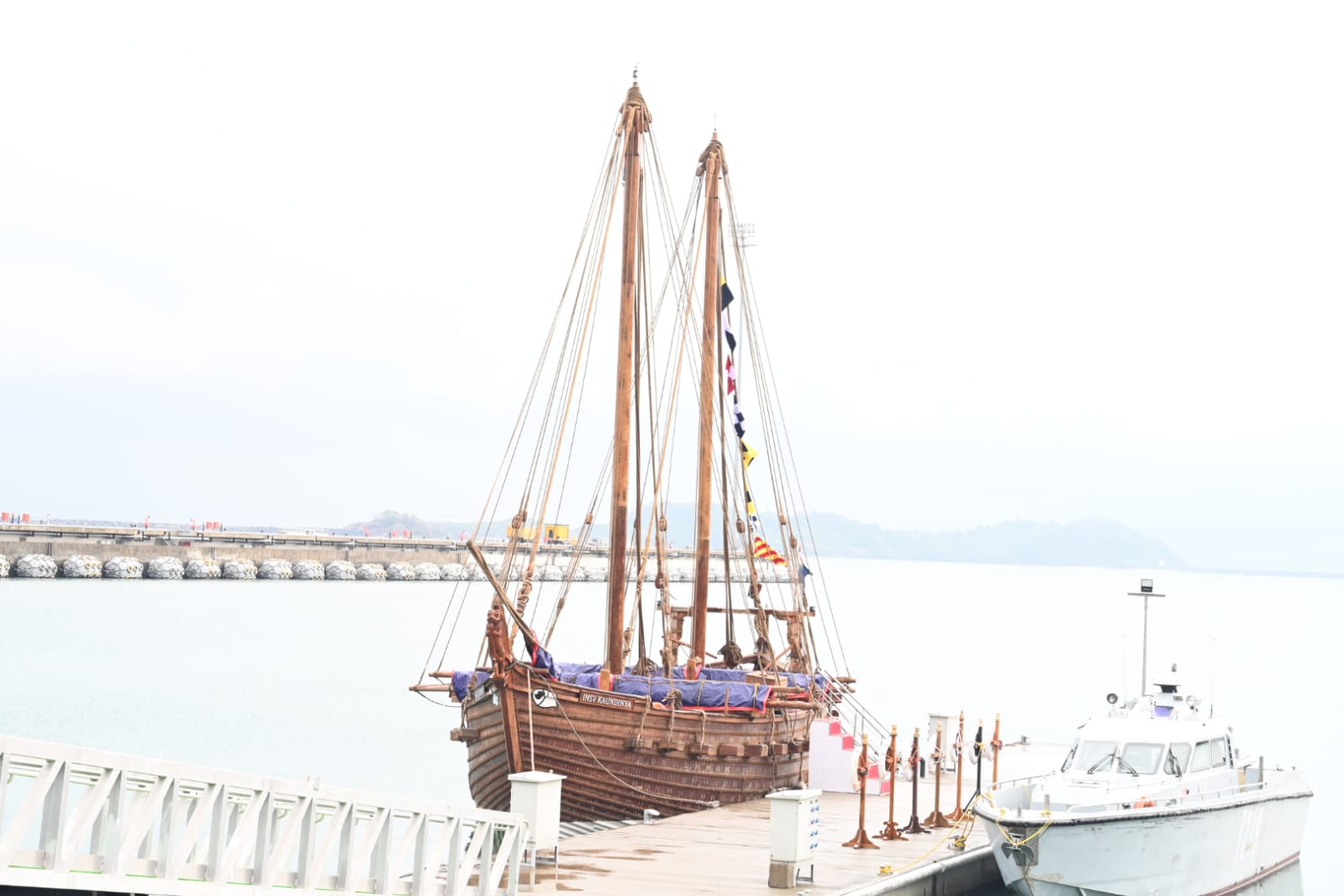
- 22 May 2025
In News:
The Indian Navy formally inducted and named an ‘ancient stitched sail ship’ as the INSV Kaundinya at a ceremonial event held at the Naval Base in Karwar. INSV Kaundinya has been built based on a 5th century ship depicted in paintings seen in the Ajanta Caves.
What is INSV Kaundinya?
The INSV Kaundinya is a reconstructed ancient stitched ship, modeled after maritime imagery found in the Ajanta Cave murals. It represents India’s historical naval engineering capabilities and cultural exchanges across the Indian Ocean.
Construction and Origins
- The project was initiated in July 2023 as a collaborative effort between the Ministry of Culture, the Indian Navy, and Hodi Innovations.
- The ship was built using traditional stitched shipbuilding methods, where wooden planks are lashed with coir ropes and coconut fibre, sealed with natural resin—a method that avoids the use of nails or metal fasteners.
- The design took inspiration from 5th-century depictions in the Ajanta caves, interpreted through archaeological analysis, hydrodynamics, and naval architecture, as no original ship designs from that era have survived.
Planned Expedition
- INSV Kaundinya is slated to retrace an ancient maritime trade route in 2025, sailing from Gujarat to Oman, highlighting India's historical seafaring ties with West Asia.
Cultural Symbolism
- The ship’s sails are embellished with traditional motifs such as the Gandabherunda (a two-headed mythical eagle) and Sun iconography, symbolizing resilience and energy.
- A SimhaYali (lion-dragon hybrid) figure adorns the bow, a nod to Dravidian maritime symbolism.
- The deck features a Harappan-style stone anchor, linking the vessel to India’s ancient Indus Valley maritime practices.
- Named after Kaundinya, an ancient Indian voyager known for establishing early trade and cultural links with Southeast Asia, the ship reflects India's historic role in transoceanic interaction.
Ajanta Cave Paintings: Artistic Reference
- Located in Maharashtra, the Ajanta Caves date from the 2nd century BCE to the 6th century CE, renowned for some of the oldest surviving Indian mural art.
- These murals use the tempera technique—painting on dry plaster with natural dyes such as red ochre and black.
- They largely portray Buddhist narratives, including Jataka Tales, and scenes from the Buddha’s life, interwoven with nature and decorative elements.
- The paintings emphasize emotional expression, spiritual depth, and distinctive anatomical stylization.
Mizoram Becomes India’s First Fully Literate State
- 22 May 2025
In News:
Mizoram has officially become India’s first fully literate state, attaining a literacy rate of 98.2% according to the Periodic Labour Force Survey (PLFS) 2023–24. This achievement surpasses the 95% threshold defined by the Ministry of Education to classify a region as fully literate.
Definition of Literacy
- As per the Office of the Registrar General of India, a literate person is someone aged 7 years or above who can read and write with understanding in any language.
- Under NEP 2020 and in alignment with SDG 4.6, the definition has expanded to include the ability to read, write, and compute with comprehension, and includes digital and financial literacy and critical life skills.
India’s Literacy Landscape (2023–24)
- National Literacy Rate: 80.9% (age 7+)
- Mizoram: 98.2% (Highest; now declared fully literate)
- Ladakh: First UT to achieve full functional literacy under ULLAS
- Lowest Literacy Rates: Andhra Pradesh (72.6%), Bihar (74.3%)
ULLAS – Nav Bharat SaakshartaKaryakram
The achievement is attributed to the ULLAS (Understanding Lifelong Learning for All in Society)programme, a centrally sponsored scheme running from 2022 to 2027, aligned with the National Education Policy (NEP) 2020.
Key Features:
- Target Group: Adults aged 15 years and above who missed formal education.
- Implementation: Based on volunteerism and the principle of Kartavya Bodh (sense of duty).
- Components:
- Foundational Literacy and Numeracy
- Critical Life Skills (including digital, legal, financial literacy)
- Basic Education
- Vocational Skills Development
- Continuing Education
- Assessment: Foundational Literacy and Numeracy Assessment Test (FLNAT) is conducted periodically for certification.
- Digital Tools: Resources provided through the DIKSHA platform and the ULLAS mobile/web portal in regional languages.
What is Functional Literacy?
Functional literacy refers to an individual's ability to apply reading, writing, and numeracy in daily tasks, enabling personal development and community participation.
Other Key Educational Initiatives
- PM SHRI Schools
- Sarva Shiksha Abhiyan
- PRAGYATA (Digital Education)
- Mid-Day Meal Scheme
- BetiBachaoBetiPadhao
- National Programme on Technology Enhanced Learning (NPTEL)
Asiatic Lion Census 2025
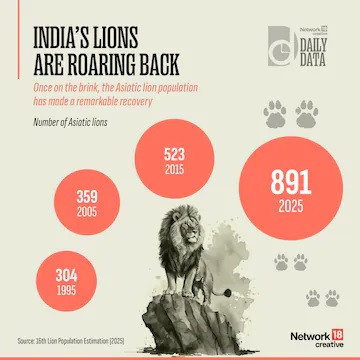
- 22 May 2025
In News:
According to the 16th Asiatic Lion Census (2025) conducted by the Gujarat Forest Department, the Asiatic lion (Panthera leopersica) population has grown from 674 in 2020 to 891 in 2025, marking a 32.2% increase in five years.
Key Highlights:
- Core Areas (Protected Forests & Sanctuaries): 384 lions
- Non-Forest Areas: 507 lions (up from 340 in 2020)
- 44.22% of the total population now lives outside traditional protected zones.
- Gir National Park, along with Gir Wildlife Sanctuary and Pania Wildlife Sanctuary, holds 394 lions—the core population.
- Amreli district leads with 257 lions, while Mitiyala Wildlife Sanctuary has seen its count double to 32.
- Barda Wildlife Sanctuary near Porbandar recorded 17 lions, marking a population return since 1879.
- New satellite populations identified near Jetpur and Babra-Jasdan.
- Adult Females: 330 recorded—a 27% increase since 2020, indicating strong reproductive potential.
Census Methodology
The 2025 census employed direct beat verification, a statistically rigorous method:
- The landscape was divided into zones and sub-zones.
- Personnel included officials, enumerators, supervisors, and volunteers.
- Unlike the tiger census (which spans 2 years), the lion census was completed in just 3 days.
Project Lion (Launched in 2020)
Aimed at ensuring the long-term conservation of Asiatic lions, Project Lion focuses on:
- Habitat restoration
- Strengthening the prey base
- Human-wildlife conflict mitigation
- Monitoring via advanced technology, including:
- Radio-collars
- Camera traps
- Global Positioning System (GPS) tracking
- GIS-based real-time surveillance
- AI-driven tools likeSIMBA, e-GujForest, andAlert Generation System
- Automated sensor grids (magnetic, motion, infrared)
Habitat and Legal Status
- Natural Habitat: Grasslands, open woodlands, savannas, and scrublands.
- Main Range: Gir Forests in Gujarat; Barda Wildlife Sanctuary emerging as a second habitat.
- Legal Protection:
- Schedule I and IV of the Wildlife (Protection) Act, 1972
- Appendix I of CITES
- IUCN Status: Vulnerable
Distinctive Traits
- Smaller in size compared to African lions.
- Males have a moderate mane allowing visible ears.
- A distinct belly fold—rare in African lions.
- No fixed breeding season.
Global Conservation Context
India is a founding member of the International Big Cats Alliance (IBCA), launched in 2023 to enhance global cooperation on big cat conservation, including lions.
Additionally, the IUCN’s Green Status of Species (2025) introduced a recovery-based conservation framework. Lions are currently classified as "Largely Depleted", highlighting the need for sustained and collaborative conservation actions.
e-Zero FIR System
- 22 May 2025
IN News:
In a significant stride toward modernizing cybercrime response mechanisms, Union Home Minister Amit Shah unveiled the e-Zero FIR system. This initiative ensures that complaints involving financial cyber frauds exceeding ?10 lakh—submitted via the 1930 helpline or the National Cybercrime Reporting Portal (NCRP)—are automatically registered as FIRs, eliminating the need for the complainant to visit a police station.
Objective and Operational Rollout
The project, developed under the guidance of the Indian Cyber Crime Coordination Centre (I4C), is aimed at accelerating the registration and investigation of high-value cybercrime cases.
- Pilot Implementation: Initiated in Delhi as a testbed.
- National Expansion: Plans are underway to replicate the model across India.
Concept of Zero FIR
The Zero FIR mechanism permits the filing of an FIR at any police station, regardless of the location of the offence. This removes jurisdictional constraints and ensures prompt registration of cases.
- Legal Backing: Incorporated under Section 173 of the BharatiyaNagarik Suraksha Sanhita (BNSS), 2023.
- Historical Context: Introduced following recommendations from the Justice Verma Committee post the 2012 Nirbhaya case, to address delays caused by jurisdictional rigidities.
Salient Features of Zero FIR
- No Jurisdictional Restrictions: Victims may file complaints at any police station or via electronic means.
- Initial Registration: The complaint is logged as a Zero FIR and then forwarded to the relevant jurisdictional police unit for investigation.
- Primary Goal: To facilitate timely intervention and prevent procedural delays for the complainant.
Integration with National Digital Systems
To enhance responsiveness and coordination, the e-Zero FIR system integrates with several key digital platforms:
- NCRP (National Cybercrime Reporting Portal) – Administered by I4C.
- Delhi Police’s e-FIR mechanism
- Crime and Criminal Tracking Network and Systems (CCTNS) – Maintained by theNational Crime Records Bureau (NCRB).
This digital infrastructure enables real-time complaint registration at Delhi’s e-Crime Police Station, which then redirects the FIR to the appropriate jurisdiction.
Alignment with New Criminal Legislation
The initiative is fully aligned with India’s revised criminal justice framework effective from July 1, 2024, which includes:
- Bharatiya Nyaya Sanhita (BNS), 2023
- BharatiyaNagarik Suraksha Sanhita (BNSS), 2023
- BharatiyaSakshyaAdhiniyam (BSA), 2023
Under the BNSS provisions:
- Mandatory Zero FIR registration under Section 173.
- Victim must visit a cybercrime police station within 72 hours to convert a Zero FIR into a formal FIR.
- Free copy of FIR to be provided to the complainant, ensuring transparency and empowering victims.
Vision for a Cyber-Secure India
The launch of the e-Zero FIR system underscores the government’s resolve to build a secure and digitally empowered India by:
- Ensuring easy and immediate access to justice for victims of cyber fraud.
- Facilitating quick action by investigative agencies without procedural bottlenecks.
- Strengthening citizen trust through digital governance and victim-friendly policing.
Elimination of Trachoma as a Public Health Problem
- 21 May 2025
In News:
At the 78th World Health Assembly in Geneva (May 2025), the World Health Organization (WHO) officially recognized Papua New Guinea (PNG) and India for eliminating trachoma as a public health problem. This marks a significant milestone in global efforts to combat neglected tropical diseases (NTDs).
What is Trachoma?
- Cause: Bacterial infection by Chlamydia trachomatis
- Transmission:
- Direct contact with infected eye/nasal discharges (via hands, clothes, bedding)
- Flies that have come into contact with infected discharges
- Reservoir: Predominantly spread among children in endemic regions
- Symptoms:
- Early: Red eyes, discharge, pain, light sensitivity
- Advanced:Trachomatous trichiasis – inward-turning eyelashes causing corneal damage and irreversible blindness
Risk Factors & Epidemiology:
- Major Risk Factors:
- Poor hygiene and sanitation
- Overcrowded housing conditions
- Limited access to clean water
- Gender Disparity: Women are 4 times more affected due to caregiving-related exposure
- Global Burden (as of 2023):
- Endemic in 38 countries
- Affects 1.9 million people with visual impairment/blindness
- Over 130,000 surgeries and 32.9 million antibiotic treatments administered globally in 2023
Trachoma Elimination in Papua New Guinea (2025):
- Validation: Based on detailed epidemiological data and surveillance (2015–2020)
- Key Findings:
- Presence of mild active trachoma in children but negligible trichiasis
- No need for mass drug administration or surgical interventions
- Intervention Strategy:Emphasis on surveillance, community-level assessments, andtargeted response
- Support & Partnerships:WHO, Fred Hollows Foundation, Australian DFAT, PNG Eye Care, London School of Hygiene & Tropical Medicine, among others
- Significance: First NTD eliminated in PNG; part of WHO’s NTD Road Map 2021–2030
Trachoma Elimination in India (Certified in May 2025):
- Timeline:
- Declared trachoma-free in October 2023
- WHO Certification in May 2025
- India’s Strategy:
- Implemented active surveillance through NPCBVI since 2019
- National Trichiasis Survey (2021–2024) covered 200 districts
- Regional Achievement:India is the third country in WHO South-East Asia Region, after Nepal and Myanmar, to eliminate trachoma
Global Status of Trachoma Elimination:
- Countries Validated for Elimination: 22 countries including India, Nepal, China, Pakistan, Iran, Morocco, Vietnam, Mauritania, and PNG
- Part of Broader NTD Goals: WHO supports member countries to eliminate at least one NTD under the 2021–2030 roadmap
Shirui Lily Festival
- 21 May 2025
In News:
The 5th State-Level Shirui Lily Festival resumed in Ukhrul district, Manipur from May 20–24, 2025, after a two-year pause due to ethnic unrest. It marks a symbolic step towards peace, as it involved significant movement through previously restricted areas with heightened security.
About the Shirui Lily Festival:
- Organised by: Manipur Tourism Department
- First Held: 2017
- Venue:Shirui Village, Ukhrul District
- Objective: Promote eco-tourism and create awareness about the endangered Shirui Lily
- Special 2025 Edition: Commemorates the 75th anniversary of the discovery of the Shirui Lily
Key Features (2025 Edition):
- Cultural Events: Traditional dances, gospel rock shows, and live performances at the ShiRock music festival
- Eco-Initiatives: Trash collection drives and conservation awareness campaigns
- Competitions:
- SheChef Cooking Contest (vegetarian & childhood memory dishes)
- Miss Shirui Lily 2025 beauty pageant
- Sports (football, wrestling, tug of war, mini-marathon)
- Adventure Activities: Ziplining, camping, biking
- Special Ceremonies: Unveiling of the 75th Anniversary Memorial and a drone show
- Closing Function: Hosted by senior officials from the Ministry of Tourism
About Shirui Lily (Lilium mackliniae):
- Botanical Name:Lilium mackliniae
- Discovered by: Botanist Frank Kingdon-Ward in 1946, named after his wife Jean Macklin
- Local Name:KashongTimrawon
- Geographic Range: Exclusively found in the Shirui Hills (2,673 m altitude) of Ukhrul district
- State Flower of Manipur
Ecological and Cultural Significance:
- Endemic Habitat: The species is not viable for transplantation outside its native micro-climate
- Flowering Season: April to June, marked by a breathtaking bloom of pinkish-white bell-shaped flowers
- Cultural Reverence: Associated with the local deity Philava, symbolising spiritual and ecological identity of the Tangkhul Naga tribe
- Global Recognition: Awarded by the Royal Horticultural Society at the London Flower Show in 1950
Conservation Status and Efforts:
- Threats: Habitat loss, invasive species, and climate change
- Conservation Status:Endangered
- Scientific Interventions: ICAR-NEH, under Dr. Manas Sahoo, has developed micropropagation techniques for in-situ conservation
India’s Climate Physical Risk (CPR)

- 21 May 2025
In News:
Amid rising climate-induced disasters—floods, heatwaves, droughts—the Union Home Minister recently called for proactive climate risk assessments. India, however, lacks a comprehensive and standardised system to assess Climate Physical Risks (CPR), exposing critical gaps in preparedness.
What is Climate Physical Risk (CPR)?
Definition: CPR refers to the potential damage from:
- Acute events: Floods, cyclones, heatwaves.
- Chronic stresses: Changing monsoon patterns, droughts.
IPCC Formula:
CPR = Hazard × Exposure × Vulnerability
- Hazard: Climate threats like floods or wildfires.
- Exposure: Presence of people/assets in risk-prone areas.
- Vulnerability: System's capacity to withstand and recover.
Why CPR Assessment Matters for India
- High Risk: Over 80% of Indians reside in districts exposed to climate disasters (World Bank).
- Systemic Threat: Affects not just the environment, but public health, agriculture, economy, and national security.
- Future-proofing Development: Long-term planning must consider CPR for sustainable infrastructure and financial stability.
Challenges in India’s CPR Management
- Fragmented Efforts: Multiple agencies (IMD, IITs, NIDM) conduct isolated studies with no integration.
- Lack of Standardised Data: No central repository for CPR metrics at the district or panchayat level.
- Modelling Limitations: Global models like RCPs and SSPs fail to capture India's hyper-local climate variations.
- Private Sector Constraints: Businesses lack tools to evaluate climate risks across supply chains.
Global Best Practices
- Mandatory Climate Disclosures: Global frameworks like ISSB S2 and EU Taxonomy require companies to report CPRs.
- Adaptation as Priority: Nations, including the Global North, are investing in adaptation infrastructure, recognizing its economic returns.
- UNEP estimates: $1 in adaptation = $4 saved in disaster recovery.
Initiatives by India
- Adaptation Communication (2023): India’s first report to the UNFCCC under Article 7 of the Paris Agreement.
- National Adaptation Plan (NAP): In progress; covers 9 thematic sectors with district-level focus.
- RBI Framework: Climate risk integrated into financial supervision and regulatory assessments.
Irula Tribe of Tamil Nadu
- 21 May 2025
In News:
In Tamil Nadu’s Kunnapattu, Irula families who have lived on the land for generations face eviction and denial of rights, as nearly half remain without legal ownership or recognition.
Who are the Irulas?
- Ethnic Group: Indigenous Dravidian community, primarily in Tamil Nadu and parts of Kerala.
- Constitutional Status: Recognized as a Scheduled Tribe and classified under Particularly Vulnerable Tribal Groups (PVTGs) in Tamil Nadu.
- Population: Second largest Adivasi group in Tamil Nadu.
- Language: Speak Irula, a Dravidian language related to Tamil and Kannada.
- Traditional Occupations: Snake-catching, healing, collection of forest produce, cattle rearing, and agricultural labour.
- Religious Beliefs: Pantheistic with reverence for spirits; worship Kanniamma (virgin goddess associated with cobras).
- Living Structures: Reside in small clusters called mottas, typically located on hill edges near forests.
Irulas and Snake Venom Economy
- The Irula Snake Catchers’ Cooperative Society supplies nearly 80% of venom for the production of anti-snake venom (ASV) in India.
- The community uses traditional knowledge to locate and capture snakes humanely, extract venom, and release them safely.
The Crisis in Kunnapattu and Beyond
Core Issue: Denial of Land Rights
- In Kunnapattu village, near Mamallapuram, ~40 Irula families have lived for generations. However, nearly 20 families lack legal land documents (pattas).
- The land is classified as meikalporamboke (grazing land), making it ineligible for patta allocation under current policies.
- Without pattas, families are denied access to electricity, government housing, and welfare schemes.
Government Response
- Officials proposed relocation with promised housing and legal ownership, but Irulas resist displacement due to ancestral ties, rituals, and local livelihoods.
- Affected families submitted multiple petitions, seeking in-situ recognition rather than relocation.
Broader Pattern across Tamil Nadu
Similar Issues in Other Villages
- Ottiyambakkam, Iyankulam, Keerapakkam, Chinnakayar, and Nemmeli show the same trend: ancestral tribal settlements without legal tenure, facing:
- Forced or incentivized relocation.
- Inadequate or delayed infrastructure (roads, electricity, water).
- Joint pattas that complicate individual welfare access.
Urbanization vs Indigenous Habitat
- Irula hamlets are increasingly surrounded or displaced by real estate developments.
- Some families resist high-rise housing due to loss of space, cultural disconnect, and impracticality for community rituals.
Notable Success: Senneri Model Village
- Near Chengalpattu, Senneri-Hanumantapuram-Dargesh is a model Irula settlement:
- Home to Padma Shri awardees in snake-catching.
- Over 10 active SHGs working in traditional medicine.
- Gender-inclusive education and organized habitation.
- However, even here, funding and timely housing construction remain challenges.
Challenges and Needs
- Lack of individual pattas limits access to electricity, housing schemes (e.g., PMAY-G), water, sanitation, and health services.
- Infrastructural gaps persist even in relocated areas.
- Traditional knowledge and community bonds are under threat from urban pressures and displacement.
Titan’s Dynamic Atmosphere
- 21 May 2025
In News:
In a significant breakthrough, NASA scientists using the James Webb Space Telescope (JWST) and Hawaii’s W. M. Keck Observatory have captured first-ever evidence of convective cloud activity in the northern hemisphere of Titan, Saturn's largest moon. The observations were conducted in November 2022 and July 2023.
About Titan:
- Second-largest moon in the Solar System (after Jupiter’s Ganymede).
- Only moon known to have a dense atmosphere and liquid hydrocarbon bodies (methane and ethane lakes/seas).
- Exhibits Earth-like weather, including clouds, rainfall, and seasonal cycles, making it unique among planetary satellites.
Key Findings:
- Clouds were observed in the mid- and high-latitudes of Titan’s northern hemisphere, the region where most of its methane seas (e.g., Kraken Mare, Ligeia Mare) are located.
- This marks the first confirmed evidence of convection-driven weather in Titan’s north, suggesting active atmospheric dynamics during Titan’s summer season.
- These findings expand our understanding of Titan’s methane cycle, which parallels Earth’s hydrological cycle, though methane replaces water.
- The JWST also detected a key organic molecule — the methyl radical, a reactive compound with an unpaired electron, involved in complex hydrocarbon chemistry.
- This is significant because sunlight and Saturn’s charged particles break apart methane in Titan’s atmosphere, initiating prebiotic chemical reactions.
Scientific Significance:
- Offers a rare opportunity to study active chemical processes in real time — likened by scientists to seeing "a cake rising in the oven" instead of just its ingredients or finished form.
- Enhances understanding of prebiotic chemistry and the potential for habitability on icy celestial bodies.
- Builds on the legacy of the Cassini–Huygens mission (2004–2017), which studied Titan’s southern hemisphere.
Dragonfly Mission: The Next Leap
- NASA's Dragonfly, a nuclear-powered octocopter, is scheduled for launch in 2028 (on a SpaceX Falcon Heavy) and expected to reach Titan in 2034.
- Aims to conduct in-situ analysis of Titan’s surface, hopping between locations to study chemistry, weather, and possible signs of life.
- Recently passed the Critical Design Review, moving into the manufacturing phase.
About the W.M. Keck Observatory:
- Located at Mauna Kea, Hawaii, at 4,200 m elevation — ideal for infrared astronomy.
- Houses two 10-meter telescopes (Keck I and II), the world’s largest optical/infrared system.
- Features segmented mirrors and real-time computer-actuated adjustments for precision imaging.
- Uses stressed mirror polishing, a major advancement in off-axis mirror technology.
58thJnanpith Award Conferred
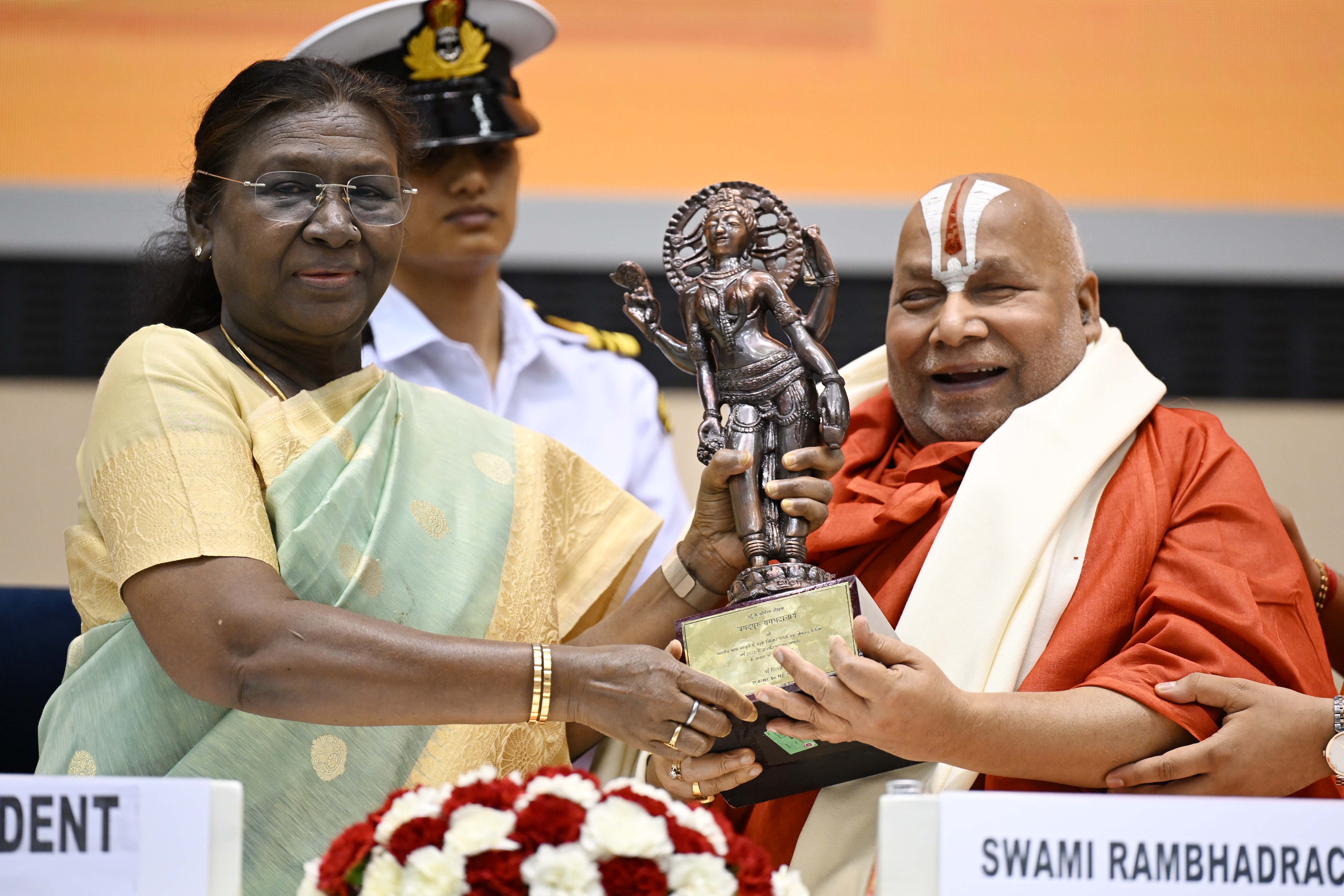
- 20 May 2025
In News:
Recently, the President of India, presented the 58thJnanpith Award to renowned Sanskrit scholar Jagadguru Rambhadracharya Ji at a function held at Vigyan Bhavan, New Delhi. She also extended congratulations to celebrated writer Gulzar, a fellow recipient who could not attend due to health reasons.
About Jagadguru Rambhadracharya
- A prominent Sanskrit scholar, spiritual leader, poet, and educationist.
- Despite being visually challenged, he has made significant literary and social contributions.
- Recognized for his multi-faceted excellence in Sanskrit literature and devotion to nation-building through literary and cultural service.
Highlights from the President’s Address
- Emphasized that literature unites and awakens society, playing a key role in movements from 19th-century social reform to the freedom struggle.
- Referenced the literary legacy of figures like Valmiki, Vyas, Kalidas, and Rabindranath Tagore as embodiments of India’s civilizational essence.
- Praised the BharatiyaJnanpith Trust for honoring literary excellence since 1965 across various Indian languages.
- Celebrated the contributions of women Jnanpith awardees such as Ashapurna Devi, Amrita Pritam, Mahasweta Devi, and Pratibha Ray, urging young women to draw inspiration from their works.
About the Jnanpith Award
Feature Details
Established 1961
First Awarded 1965 to Malayalam poet G. SankaraKurup for Odakkuzhal
OrganisedBy BharatiyaJnanpith, a literary and cultural organization founded in 1944
Eligibility Indian citizens writing in Schedule VIII languages of the Constitution or
in English
Award Components Cash prize, citation, and a bronze replica of Vagdevi (Saraswati)
Nature Annual, but may be withheld if no suitable candidate is found
One-Time Recognition A writer can receive the award only once
Language Rotation Rule A language that has received the award is ineligible for the next two years
New Calcedonia
- 20 May 2025
In News:
For decades, New Caledonia, a French island territory of approximately 2,71,400 people in the southwest Pacific Ocean, has been on a complex journey regarding its status.
Geography and Strategic Significance
- Location: South Pacific Ocean, ~1,500 km east of Australia.
- Status: French overseas territory; part of EU’s Overseas Countries and Territories (OCTs), but outside the Euro and Schengen zones.
- Key Resources: Holds ~25% of the world’s nickel reserves.
- UNESCO Heritage: Lagoons and coral reefs recognized in 2008.
- Capital: Nouméa
Demographics (2019 Census)
- Population: ~2,71,400
- Indigenous Kanaks: ~39%
- Others: European, Polynesian, Vietnamese, Indonesian, Algerian descent.
Historical Timeline
- 1853: France annexes the islands; becomes a penal colony.
- 1957: French citizenship granted to all residents.
- 1980s: Ethnic tensions escalate; near civil war.
- 1988: Matignon Agreements signed.
- 1998: Nouméa Accord grants wide autonomy, New Caledonian citizenship, and promised three referendums on independence.
Independence Referendums
- 2018 & 2020: Majority voted against independence.
- 2021: Final vote boycotted by pro-independence groups (FLNKS) citing COVID-19 and customary mourning; outcome rejected as illegitimate.
Recent Crisis (2024)
- Trigger: French proposal to “unfreeze” electoral rolls to include newer residents.
- Consequence: Violent riots, 14 deaths, and widespread unrest.
- Talks Collapse: May 2024 negotiations failed due to rejection of the “sovereignty in partnership” proposal by loyalists.
Sovereignty-in-Partnership Proposal
- Envisioned enhanced self-rule with international recognition.
- Power would be delegated back to France in certain domains (e.g., judiciary).
- Rejected by loyalists as “disguised independence”.
Alternate Proposal by Loyalists
- Partition Model:
- Pro-independence North & Loyalty Islands – special status
- Wealthier, loyalist South Province – remain French
- Rejected by all sides:
- France – violates territorial integrity.
- FLNKS – compared it to apartheid.
What Lies Ahead?
- Provincial Elections due by November 2025.
- No political consensus on institutional status raises concerns of prolonged instability.
Supreme Court Strikes Down Retrospective Environmental Clearances

- 20 May 2025
In News:
In a significant verdict for environmental governance, the Supreme Court of India, in the case Vanashakti v. Union of India (May 2025), struck down the 2017 notification and 2021 Standard Operating Procedure (SOP) issued by the Ministry of Environment, Forest and Climate Change (MoEF&CC). These instruments allowed retrospective (ex-post facto) environmental clearances—i.e., granting environmental approval to industries after they had begun operations without prior clearance.
What are Retrospective Environmental Clearances?
- Definition: Ex-post facto clearances permit projects to start operations without prior Environmental Impact Assessment (EIA) approval and seek clearance later.
- Contradiction: These violate the EIA Notification, 2006, issued under the Environment (Protection) Act, 1986, which mandates prior approval before beginning any project impacting the environment.
Details of the 2017 Notification & 2021 SOP
- 2017 Notification:
- Provided a one-time 6-month window for industries that violated clearance norms to regularize operations.
- Central-level appraisal for all cases, regardless of project size or category.
- Violators remained subject to action by State Pollution Control Boards.
- Intended to bring violators under regulatory oversight and ensure remediation costs.
- 2021 SOP:
- Issued to standardize processing of violation cases following an NGT directive.
- Did not use the term “ex-post facto”, but allowed project appraisals after operations began—effectively regularising violations.
- Appraisal Committee: A committee led by NEERI’s former director S.R. Wate appraised such cases over 47 meetings between 2017–2021.
Supreme Court’s Rationale
- Violation of Fundamental Rights:
- Held the 2017 Notification and 2021 SOP unconstitutional as they violate:
- Article 21 – Right to a clean and pollution-free environment.
- Article 14 – Equality before law; violators were unjustly protected.
- Held the 2017 Notification and 2021 SOP unconstitutional as they violate:
- Against Environmental Jurisprudence:
- Reaffirmed past rulings:
- Common Cause v. Union of India (2017)
- Alembic Pharmaceuticals v. Rohit Prajapati (2020)
- These had declared ex-post facto clearances illegal and anathema to environmental law.
- Reaffirmed past rulings:
- On “One-Time” Justification:
- Rejected the Centre’s argument that the 2017 measure was a one-time exception.
- Even a one-time relaxation, the Court said, undermines environmental protections and encourages illegal practices.
- Criticized Centre's Intent:
- Noted that the SOP was a disguised attempt to bring back ex-post facto clearances.
- Warned against such “clever drafting” to bypass the law.
Implications of the Verdict
- Reinforces EIA Norms: Upholds the mandatory prior environmental clearance process under EIA 2006.
- Strengthens Environmental Rule of Law: Emphasizes precautionary principle and polluter pays principle.
- Curtails Regulatory Evasion: Sends a clear message that industries cannot bypass environmental safeguards.
- Protects Public Health: Highlights link between environmental damage and issues like pollution in Delhi.
- Judicial Oversight: Asserts constitutional checks on executive actions that dilute environmental protections.
Operation Olivia
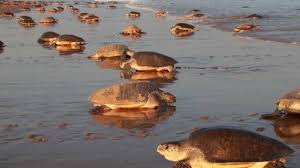
- 20 May 2025
In News:
Operation Olivia is an annual conservation initiative launched by the Indian Coast Guard (ICG) in collaboration with the Odisha Forest Department, aimed at protecting the nesting habitats of Olive Ridley turtles along the Odisha coastline. It is conducted from November to May, aligning with the turtles’ mass nesting (Arribada) season.
Key Features of Operation Olivia (as of 2025)
- In February 2025, a record 6.98 lakh Olive Ridley turtles nested at the Rushikulya river mouth.
- Since inception, the ICG has conducted:
- 5,387 surface patrol sorties
- 1,768 aerial surveillance missions
- 366 boats involved in illegal fishing were detained, ensuring effective protection of the turtles' breeding grounds.
- 225 ship days and 388 aircraft hours were dedicated to Operation Olivia during a recent season.
- Focus areas include Gahirmatha Beach, Rushikulya, and Dhamra river mouths in Odisha—home to over 8 lakh nesting turtles annually.
Conservation Measures
- Fishing ban within 20 km of nesting coasts (Devi, Dhamra, and Rushikulya rivers), enforced under:
- Orissa Marine Fishing Regulation Act, 1982
- Wildlife Protection Act, 1972
- Promotion of Turtle Excluder Devices (TEDs) to reduce accidental bycatch.
- Community awareness campaigns and MoUs with NGOs to ensure local participation and education on marine conservation.
About Olive Ridley Turtles
- Scientific Name:Lepidochelysolivacea
- IUCN Status: Vulnerable
- Legal Protection:
- Schedule I, Wildlife Protection Act, 1972
- Appendix I, CITES
- Habitat: Warm tropical waters of the Pacific, Atlantic, and Indian Oceans
- India’s Nesting Sites:
- Gahirmatha Marine Sanctuary – world’s largest rookery
- Rushikulya and Devi river mouths in Odisha
- Unique Feature: Mass nesting behavior known as Arribada, where thousands of females lay eggs on the same beach.
- Behavior: Omnivorous and solitary; migrate thousands of kilometers annually between feeding and breeding grounds.
Viksit Krishi Sankalp Abhiyan
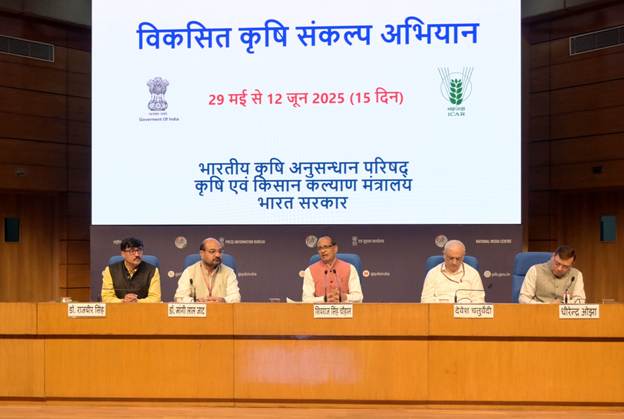
- 20 May 2025
In News:
The Viksit Krishi Sankalp Abhiyan is a nationwide agricultural outreach and awareness initiative being launched by the Ministry of Agriculture & Farmers Welfare from May 29 to June 12, 2025.
The campaign is part of the government’s vision of “Viksit Bharat” and seeks to empower farmers through the dissemination of modern agricultural knowledge, technologies, and innovations across India.
Key Objectives and Vision
- Enhance agricultural productivity, improve farmer incomes, and ensure national food security.
- Promote modern, sustainable, and scientific farming practices aligned with the Prime Minister’s Lab-to-Land vision.
- Strengthen agriculture’s contribution to making India the “Food Basket of the World.”
Campaign Features
- Coverage: 700+ districts, 65,000+ villages, targeting 1.3–1.5 crore farmers
- Organized by: Ministry of Agriculture, ICAR, agricultural universities, and state governments
- Teams Deployed: ~2,170 expert teams with scientists, officials, FPOs, and progressive farmers
- Sessions Held: Morning, afternoon, and evening village-level meetings daily
- Format: Two-way interaction for knowledge dissemination and farmer feedback
Strategic Focus Areas
- Lab-to-Land Technology Transfer:Dissemination of ICAR research, advanced seed varieties, scientific sowing practices, and balanced fertilizer use through 731 Krishi Vigyan Kendras (KVKs).
- Farm Productivity and Resource Use Efficiency:Recommendations based on Soil Health Cards, agro-climatic conditions, water availability, and rainfall data to reduce input costs and promote sustainable practices.
- Farmer Empowerment and Inclusivity:Addressing field-level challenges like pest infestation, enabling participatory feedback loops for future agricultural research.
- Six-Point Strategy by Ministry:
- Increase agricultural output
- Lower production costs
- Ensure fair pricing for farmers
- Compensate disaster-related losses
- Promote crop diversification and value addition
- Encourage natural and organic farming
Notable Achievements and Data
- Record Agricultural Output (2024–25):
- Foodgrains: 3309.18 lakh tonnes (up from 3157.74 lakh tonnes in 2023–24)
- Pulses: 230.22 lakh tonnes
- Oilseeds: 416 lakh tonnes
- Kharif Rice: 1206.79 lakh tonnes
- Wheat: 1154.30 lakh tonnes
- Maize: 248.11 lakh tonnes
- Groundnut: 104.26 lakh tonnes
- Soybean: 151.32 lakh tonnes
- Over 16,000 agricultural scientists are contributing to real-time research translation to the field.
Coral Reefs
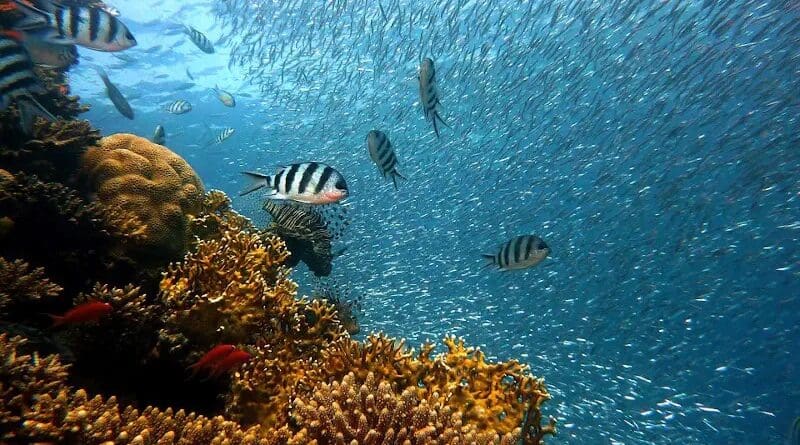
- 19 May 2025
In News:
In a paper published in the Cell Press journal Trends in Biotechnology, researchers demonstrate that the ink could boost coral settlement by more than 20 times, which they hope could contribute to rebuilding coral reefs around the world.
Recent Development in Coral Restoration
- Institution: University of California, San Diego
- Innovation: Development of SNAP-X, a specialized bio-ink.
- Significance: SNAP-X boosts coral larvae settlement by 20 times, marking a major advancement in coral reef restoration, especially vital in the context of climate change-induced reef degradation.
What are Coral Reefs?
- Coral reefs are diverse marine ecosystems formed by colonies of coral polyps, which secrete calcium carbonate to create hard exoskeletons.
- These ecosystems thrive in warm, shallow, and clear tropical waters and are among the most productive on Earth.
Examples of Coral Reefs
- Global: Great Barrier Reef (Australia)
- India: Gulf of Mannar, Lakshadweep Islands
Importance of Coral Reefs
- Biodiversity Hotspots: Support thousands of marine species.
- Coastal Protection: Act as natural barriers against storms and erosion.
- Livelihoods: Sustain tourism and fisheries industries.
- Food Security: Provide fish and other resources to coastal communities.
Types of Coral Reefs
- Fringing Reefs
- Found close to coastlines
- Separated from land by shallow lagoons
- Most widespread type
- Barrier Reefs
- Located farther from shore
- Separated by deeper, wider lagoons
- Example: Great Barrier Reef
- Atolls
- Ring-shaped reefs surrounding a central lagoon
- Often form around subsiding volcanic islands
- Found in the Indian and Pacific Oceans
Favorable Conditions for Coral Reef Growth
Factor Requirement
Water Temperature Around 20°C; typically in tropical zones (30°N to 30°S)
Sunlight Shallow depths (up to ~55 meters) allow photosynthesis
Water Clarity Low nutrient and sediment levels for light penetration
Salinity Stable marine salinity levels
Pollution Minimal; corals are sensitive to chemical/sediment pollutants
Food Supply Plankton-rich water sustains coral polyp
World Food Prize 2025
- 19 May 2025
Latest Winner
- Recipient: Mariangela Hungria, a microbiologist from Brazil.
- Achievement: Recognized for her groundbreaking research in biological seed and soil treatments that improve crop nutrition and yields.
- Her innovations reduce the dependency on chemical fertilizers by helping crops derive nutrients through soil microbes, enhancing sustainable agricultural practices.
About the World Food Prize
- Nature of the Award: A prestigious international honour for outstanding contributions to the global food system.
- Often referred to as the “Nobel Prize for Food and Agriculture.”
Objectives
- Recognizes exceptional efforts in improving the quality, quantity, and accessibility of food worldwide.
- Contributions can come from fields such as:
- Agricultural science & technology
- Food production and nutrition
- Economics, policy, marketing
- Poverty reduction & social science
- Leadership in food security initiatives
Establishment
- Founded in: 1986 by Dr. Norman E. Borlaug, Nobel Peace Prize laureate (1970) and father of the Green Revolution.
- Administered by: The World Food Prize Foundation, with support from public and private sector partners.
Award Details
- Prize Amount: $500,000
- Award Ceremony: Held annually in Des Moines, Iowa, USA, during the Borlaug Dialogue and around World Food Day (October 16).
Historical Note
- India’s Contribution: Renowned agricultural scientist M.S. Swaminathan was the first recipient of the World Food Prize in 1987.
- Honoured for introducing high-yielding wheat and rice varieties in India during the 1960s, contributing to food self-sufficiency.
Mosurafentoni

- 19 May 2025
In News:
A new species named Mosurafentoni—a small, three-eyed sea predator—has been discovered in fossils dating back 506 million years. The findings were published in Royal Society Open Science.
Key Highlights:
- Time Period: Cambrian Period (approx. 506 million years ago)
- Classification: Belonged to Radiodonts, an extinct group related to modern-day arthropods like insects, spiders, and crustaceans.
- Unique Traits:
- Three eyes – with a large third eye on the head.
- Jointed claws – similar to crabs or insects, possibly used for capturing prey.
- Swimming style – moved like a stingray using multiple undulating flaps; referred to as “flying underwater”.
- Body structure – featured a trunk-like segment with 16 parts and gills, aiding respiration.
- Mouth – circular, resembling a pencil sharpener lined with serrated plates for slicing prey.
- Size – around the length of a human finger.
- Nickname: Dubbed the "Sea Moth" due to its flapping motion and size.
Ecological Role
- Likely fed on smaller marine organisms like worms and crustaceans.
- Possibly preyed upon by larger predators such as ancient jellyfish.
Evolutionary Significance
- Shows early arthropod diversity and evolutionary complexity.
- Body structure similarities with modern species like horseshoe crabs and woodlice suggest parallel evolutionary adaptations.
- Helps understand the transition from simple worm-like organisms to complex body plans in early marine ecosystems.
Gyan Bharatam Mission
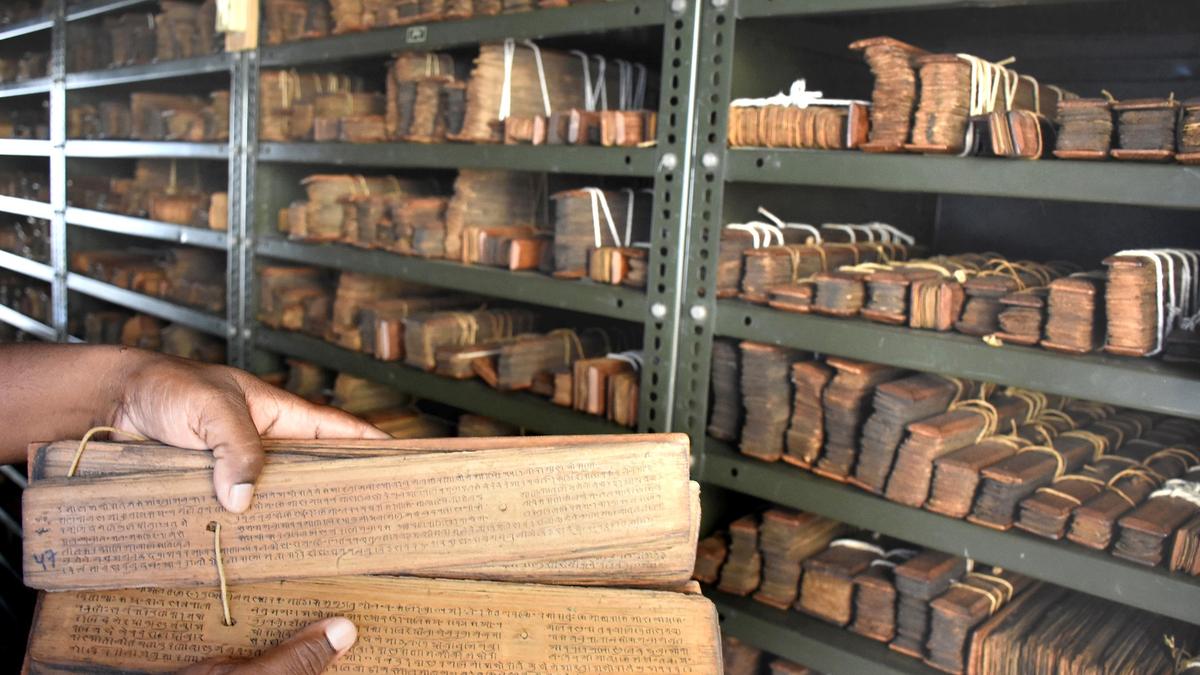
- 19 May 2025
In News:
Prime Minister Narendra Modi will launch the revamped National Manuscripts Mission, which was announced in the Union Budget earlier this year, on June 9.
Key Highlights:
- Implementing Body: Ministry of Culture, Government of India
- Earlier Version: National Manuscripts Mission (est. 2003), under Indira Gandhi National Centre for the Arts (IGNCA)
- Objective:To survey, document, conserve, and digitize over one crore (10 million) Indian manuscripts located in academic institutions, libraries, museums, and private collections.
Key Features
- Massive Coverage: Targets over 1 crore manuscripts, making it India’s largest manuscript preservation project.
- Digital Repository: Creation of a National Digital Repository of Indian Knowledge Systems to ensure accessibility for researchers and the public. Includes AI-powered tools for metadata tagging, translation, and archiving.
- Modern Techniques: Uses advanced scientific conservation methods, including AI and 3D imaging.
- Collaborative Model: Engages academic institutions, libraries, museums, private collectors, and international bodies.
- Budgetary Support: Budget raised from ?3.5 crore to ?60 crore, with a total outlay of ?482.85 crore for 2024–31.
Background and Need
- The earlier NMM (2003) made limited progress. Out of 52 lakh manuscripts surveyed, only 3 lakh titles were digitized, and only 70,000 are currently viewable due to lack of access policy.
- 80% of manuscripts in India are privately owned, underscoring the need for public-private collaboration.
- Over 9 crore folios have been conserved (preventive and curative) in the last two decades.
What is a Manuscript?
A manuscript is a handwritten document (on paper, palm leaf, birch bark, etc.), at least 75 years old, and of historical, scientific, or artistic significance.
Example: The Bakhshali Manuscript (3rd–4th century BCE) is a key Indian text on mathematics, featuring the earliest known use of the symbol for zero.
GRAIL Mission
- 19 May 2025
In News:
The Moon, Earth's only natural satellite, exhibits a striking hemispheric contrast. The nearside, visible from Earth, is dominated by dark, flat basaltic plains (mare), while the farside is rugged, heavily cratered, and lacks these features. This asymmetry has long puzzled scientists.
Recent findings from NASA's GRAIL (Gravity Recovery and Interior Laboratory) mission, launched in 2011, have provided critical insights into this phenomenon.
GRAIL Mission: An Overview
- Objective: To map the Moon’s gravitational field in unprecedented detail.
- Spacecraft: Two identical probes named Ebb and Flow.
- Method: By measuring the tiny variations in the distance between the probes as they orbited the Moon, scientists could infer differences in crust thickness, interior composition, and subsurface structures.
Key discoveries:
- The Moon’s crust is more porous and thinner than previously thought.
- Detection of long, linear features called dikes, indicating early lunar expansion.
Reasons for Lunar Asymmetry
- Tidal Deformation and Gravitational Asymmetry
- The nearside flexes more than the farside during the Moon’s elliptical orbit, a result of tidal deformation caused by Earth’s gravity.
- The increased internal heat and flexibility on the nearside suggest it is warmer and more geologically active at depth.
- Volcanic Activity and Heat Distribution
- The nearside experienced intense volcanic activity billions of years ago, forming the large mare regions.
- This activity led to the concentration of radioactive, heat-producing elements (like thorium and titanium) in the nearside mantle.
- The nearside mantle is 100–200°C hotter than the farside, establishing a long-term thermal imbalance.
- Crustal Thickness and Surface Composition
- The nearside crust is significantly thinner, allowing magma to reach the surface more easily, contributing to extensive lava flows.
- The thicker farside crust restricted such activity, preserving its rugged, cratered appearance.
Implications for Space Science and Earth
- The findings aid in developing precise lunar navigation and positioning systems, essential for future human missions.
- The methodology can be applied to other celestial bodies like Enceladus (Saturn) and Ganymede (Jupiter), both candidates in the search for life.
- Understanding the Moon's structure enhances our grasp of Earth-Moon gravitational dynamics, which affect tides and planetary stability.
Bhargavastra: India’s Indigenous Anti-Drone Weapon System
- 18 May 2025
In News:
India has developed 'Bhargavastra', a cutting-edge indigenous weapon system designed to neutraliseenemy drones, including drone swarms. It has been developed by Solar Defence and Aerospace Limited (SDAL), marking a major advancement in India’s drone warfare capabilities.
Key Features:
- Type:A multi-layered anti-drone system using micro-rockets and guided micro-missiles.
- Detection & Destruction Range:
- Detects drones from 6–10 km using radar.
- Destroys drones up to 2.5 km away.
How It Works:
- Layer 1:
- Unguided micro-rockets target drone swarms.
- Each rocket has an effective kill radius of 20 meters.
- Layer 2:Guided micro-missiles provide precision strikes on individual drones.
- Additional Features:Jammers and spoofers to confuse and disable drones electronically.
Successful Testing:
- Date & Location:Conducted on May 13, 2025, at the Seaward Firing Range, Gopalpur, Odisha.
- Results:
- Three tests: two with single rockets, one with two rockets fired within two seconds.
- All rockets hit their intended targets successfully.
Technological Components:
- Integrated Command and Control Centre
- High-resolution cameras and infrared sensors
- Real-time battlefield awareness system
Operational Versatility:
- All-Terrain Capability:Effective even in high-altitude zones above 5,000 metres.
- User Base:Can be deployed by Indian Army, Air Force, and Navy.
- Modularity:System components such as radars and launchers can be configured based on operational requirements.
Significance:
- Strategic Defence Tool:Counters rising threats from low-cost drones and UAV swarms.
- Indigenous Development:Boosts the Make in India initiative in defence manufacturing.
- First-of-its-kind in India:Among the few operational drone defence systems globally with successful tests.
Ayurveda Day

- 18 May 2025
In News:
The Government of India has officially fixed September 23 as Ayurveda Day, replacing the earlier practice of celebrating it on Dhanteras, which follows a variable lunar calendar. This change, notified through a Gazette notification in March 2025, aims to bring uniformity and global visibility to Ayurveda observance.
About Ayurveda Day:
- Purpose:Ayurveda Day is observed to honour India’s ancient medicinal heritage and promote Ayurveda as a scientific, evidence-based, and holistic healthcare system rooted in preventive and sustainable wellness practices.
- New Fixed Date:Starting 2025, Ayurveda Day will be celebrated every year on 23rd September, coinciding with the autumnal equinox, a day when day and night are nearly equal, symbolizing balance—a core concept in Ayurvedic philosophy.
- Why the Shift?The previous observance on Dhanteras created logistical challenges due to its annual date fluctuation (between mid-October and mid-November). The new fixed date allows for better planning and consistent global celebrations.
- Symbolism of Autumnal Equinox:The equinox represents cosmic balance and harmony, aligning with Ayurveda’s emphasis on equilibrium between mind, body, spirit, and environment.
Ayurveda: Key Facts for UPSC
- Definition:Ayurveda, meaning the “Science of Life” (from Sanskrit Ayu = life, Veda = knowledge), is a traditional Indian medical system dating back over 5,000 years, with roots in the Atharva Veda.
- Core Principles:
- SwasthasyaSwasthyaRakshanam: Maintaining the health of the healthy
- AturasyaVikaraPrashamanam: Treating diseases in the sick
- Emphasis on natural healing, diet, seasonal routines, and mind-body balance
- Key Features:
- Focus on preventive healthcare
- Use of herbal medicines, detox therapies, yoga, and meditation
- Personalised treatment based on individual constitution (Prakriti)
Significance for Global Health:
The Ministry of AYUSH envisions Ayurveda Day as a global platform to promote India’s traditional knowledge system as a part of the international wellness movement. Health professionals, researchers, academic institutions, and global partners are encouraged to participate in its observance to integrate Ayurveda into broader healthcare dialogues.
Operation Black Forest
- 18 May 2025
In News:
One of India’s most extensive anti-Naxal offensives in recent years, Operation Black Forest, resulted in the elimination of 31 Maoists. The operation was conducted in the Kurraguttalu Hills, a strategic Maoist stronghold located on the Chhattisgarh–Telangana border.
Key Features of Operation Black Forest
- Type: High-intensity counterinsurgency operation
- Duration: 21 days
- Area of Operation:Kurraguttalu Hills (approx. 1,200 sq km), known for rugged terrain and dense forest cover
Objectives:
- Dismantle key Maoist bases and operational infrastructure
- Neutralize senior Maoist leadership
- Re-establish state control in insurgency-affected zones
- Contribute to the national target of eliminating Left Wing Extremism (LWE) by March 31, 2026
Security Forces Involved:
- Central Reserve Police Force (CRPF)
- CoBRA (Commando Battalion for Resolute Action) units
- Chhattisgarh Police, including:
- Special Task Force (STF)
- District Reserve Guard (DRG)
About Kurraguttalu (Karregutta) Hills
- Geographical Location: On the inter-state border of BhadradriKothagudem district (Telangana) and Sukma district (Chhattisgarh)
- Terrain Characteristics:
- Extends over 25–50 km
- Features include steep elevations (~5,000 feet), caves, waterfalls, and dense forest cover
- Topography ideal for guerrilla warfare and concealment
- Local Terminology: Referred to by tribal communities as “Black Hills” or “Carregutta”
Demographic & Socio-political Aspects:
- Inhabited by Koya, Gond, and Chenchu tribes
- Tribal communities have historically been vulnerable in the conflict zone, often caught between insurgents and state forces
Other Key Maoist-affected Regions
- Abujhmad (Chhattisgarh)
- Malkangiri (Odisha)
- Gadchiroli (Maharashtra)
These areas, like Karregutta, serve as critical Maoist corridors with difficult terrain and limited state presence, posing ongoing challenges to internal security operations.
India’s First Geothermal Production Well in Northeast

- 18 May 2025
In News:
In a significant advancement for clean energy in Northeast India, Dirang in Arunachal Pradesh has become the site of the region’s first operational geothermal production well. This marks a pivotal step in utilizing Earth’s internal heat for sustainable energy generation in the eastern Himalayas.
Project Details
- Location:Dirang, West Kameng district, Arunachal Pradesh
- Terrain: Eastern Himalayan region
Technology Used
- The project employs a closed-loop binary Organic Rankine Cycle (ORC) system, which captures subsurface geothermal heat for applications such as:
- Electricity generation
- Space heating
- Agricultural processing
- Reservoir Temperature: Approx. 115°C — optimal for direct-use geothermal systems.
- Drilling Approach: Low-impact precision drilling aimed at fault zones between quartzite and schist rock formations.
Institutional Collaboration
- Implementing Agency:Centre for Earth Sciences and Himalayan Studies (CESHS), Itanagar
- Supported by:
- Ministry of Earth Sciences, Government of India
- Government of Arunachal Pradesh
- International partners from Norway, Iceland, and Guwahati research institutes
Significance
- First-of-its-kind in the entire Northeast region
- Potential to make Dirang energy self-reliant through clean geothermal power
- Helps replace diesel and firewood in cold climates, reducing emissions
- Can enhance agricultural productivity and living standards in high-altitude areas
- Strengthens India’s geothermal potential (~10,600 MW), offering reliable base-load renewable energy unlike solar or wind
Stagflation and Banking Sector Risks in the U.S.

- 18 May 2025
In News:
In 2025, economic analysts are raising alarms over growing signs of stagflation in the United States and its potential to trigger a renewed banking crisis similar to the collapse of Silicon Valley Bank (SVB) in 2023.
Unrealized Losses in U.S. Banks
As of early 2025, U.S. banks are grappling with $482.4 billion in unrealized losses from securities investments, according to the Federal Deposit Insurance Corporation (FDIC). This marks a 32.5% rise from the previous quarter. The figure is approaching the $515 billion mark observed during the SVB crisis and could rise to $600–700 billion if interest rates hit 5%.
These losses are primarily linked to long-term securities like government bonds, whose prices have fallen due to rising benchmark 10-year Treasury yields, now exceeding 4.5%.
What is Stagflation?
Stagflation is a rare and difficult economic condition marked by:
- High inflation
- Stagnant or negative economic growth
- High unemployment
It complicates policymaking because:
- Tightening monetary policy (raising interest rates) to control inflation can worsen unemployment and slow growth.
- Loosening policy to boost growth can further fuel inflation.
Causes of Stagflation in 2025:
- Supply Shocks – Rising input costs (e.g., energy or tariffs).
- Tariff Hikes – New U.S. tariffs on imports have raised production costs.
- Policy Missteps – Uncoordinated fiscal and monetary measures.
Impacts on the Financial Sector
- Reduced Bond Values: High interest rates lower the market value of banks’ bond holdings.
- Risk of Bank Runs: Diminished asset values can trigger depositor panic.
- Credit Losses: Particularly in sectors like tech and venture capital where firms have weak earnings and poor debt coverage.
- Liquidity Crisis: A sudden negative news cycle could lead to another SVB-like collapse.
Experts warn that continued high interest rates could deepen banking stress and prolonged stagflation could amplify credit defaults.
India’s Agri-Export Regime
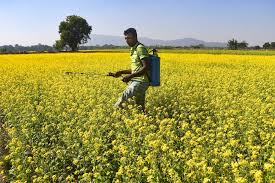
- 17 May 2025
In News:
India has recently inked free trade agreements (FTAs) with the United Kingdom, a trade and economic partnership agreement with the EFTA bloc, and concluded terms of reference for an India-US trade agreement. It is also negotiating with the European Union. In short, India is racing to plug itself into shifting global supply chains. Yet amid all the flashbulbs and photo?ops, India’s agriculture sector remains conspicuously absent.
Definition:
India’s agricultural export regime comprises the policies, institutions, and infrastructure that regulate and promote the export of farm produce.
Present Status:
- In 2023–24, India’s agricultural exports declined to $48 billion, down from $52 billion in 2022–23.
- Basmati rice accounts for approximately 21% of the total agri-export value.
- Bodies such as APEDA and branding tools like ODOP-GI tags play a role in market promotion.
- Agricultural products have been kept largely outside recent FTAs due to concerns over food security, rural employment, and political sensitivity.
Key Challenges in India’s Agri-Export Ecosystem
- Limited FTA Coverage:Agriculture is often excluded or granted extended transition periods in trade agreements, limiting access to foreign markets.
- High Rejection Rates:Several Indian agri-products face export rejections due to non-compliance with Sanitary and Phytosanitary (SPS) norms and pesticide residue limits (e.g., mangoes, groundnuts).
- Governance Gaps:With agriculture under the State List and trade under the Union List, there is often a disconnect in policy coordination, affecting timely decisions.
- Lack of Value Addition:A significant share of exports is in the form of raw produce, with insufficient emphasis on processed or brandedagri-goods.
- Infrastructure Deficits:Inadequate cold storage, pre-cooling facilities, and container depots—particularly in landlocked states like Uttar Pradesh and Madhya Pradesh—hinder export readiness.
- Subsidy Distortions:Input subsidies on power, water, and fertilizers disincentivize farmers from diversifying to export-oriented, high-value crops.
Strategic Roadmap for Agri-Export Growth
- Boost Value Addition:
- Establish agro-processing zones near APMCs.
- Incentivize processed exports through output-linked schemes.
- Strengthen Policy Coordination:Form a National Agri Trade Council involving the Centre, States, APEDA, FSSAI, and industry stakeholders to harmonize regulations and streamline decision-making.
- Reform Subsidy Framework:Transition to Direct Benefit Transfers (DBT) instead of input-based subsidies to encourage crop diversification and resource efficiency.
- Leverage Agri-Tech Solutions:Expand use of AI tools for crop health monitoring, promote vernacular advisories, and enhance access to real-time market data.
- Upgrade Infrastructure:
- Deploy GIS-based mapping for tracking surplus zones and export potential.
- Develop pre-cooling chains, inland ports, and container hubs in the hinterlands.
- Improve Connectivity in Interior States:Focus on building logistics networks in non-coastal states like UP and MP to integrate them with export supply chains.
Tsarap Chu Conservation Reserve
- 17 May 2025
In News:
Recently, the Himachal Pradesh Government notified the Tsarap Chu Conservation Reserve, making it India’s largest conservation reserve, spanning 1,585 sq km. It is located in the Spiti Valley of Lahaul-Spiti district, a high-altitude, cold desert ecosystem.
Legal Status:
- Declared under Section 36A(1) of the Wildlife (Protection) Act, 1972
- It is Himachal Pradesh’s fifth conservation reserve after Darlaghat, Naina Devi, Potter Hill, and Shilli
Geographical Significance:
- Boundaries:
- North: Union Territory of Ladakh
- East: Kibber Wildlife Sanctuary (up to Malang Nala and LungarLungpa)
- South: KabjimaNala
- West: Chandratal Wildlife Sanctuary
- Encompasses the confluence of Unam River and CharapNala
- Serves as the catchment area of Charap Nallah and a critical wildlife corridor linking Kibber and Chandratal sanctuaries
Ecological Importance:
- Identified as a high-density snow leopard habitat
- Other key species:
- Tibetan wolf, bharal (blue sheep), Himalayan ibex
- Kiang (Tibetan wild ass), Tibetan argali
- Rich in avian biodiversity: Rose Finch, Tibetan Raven, Yellow-billed Chough
Management and Community Involvement:
- To be managed by a Conservation Reserve Management Committee including local Panchayat representatives
- Emphasizes community-based conservation, balancing ecological goals with local livelihoods
- Promotes eco-tourism, wildlife research, and nature-based livelihood opportunities
Chenchu Tribe and Indiramma Housing Scheme
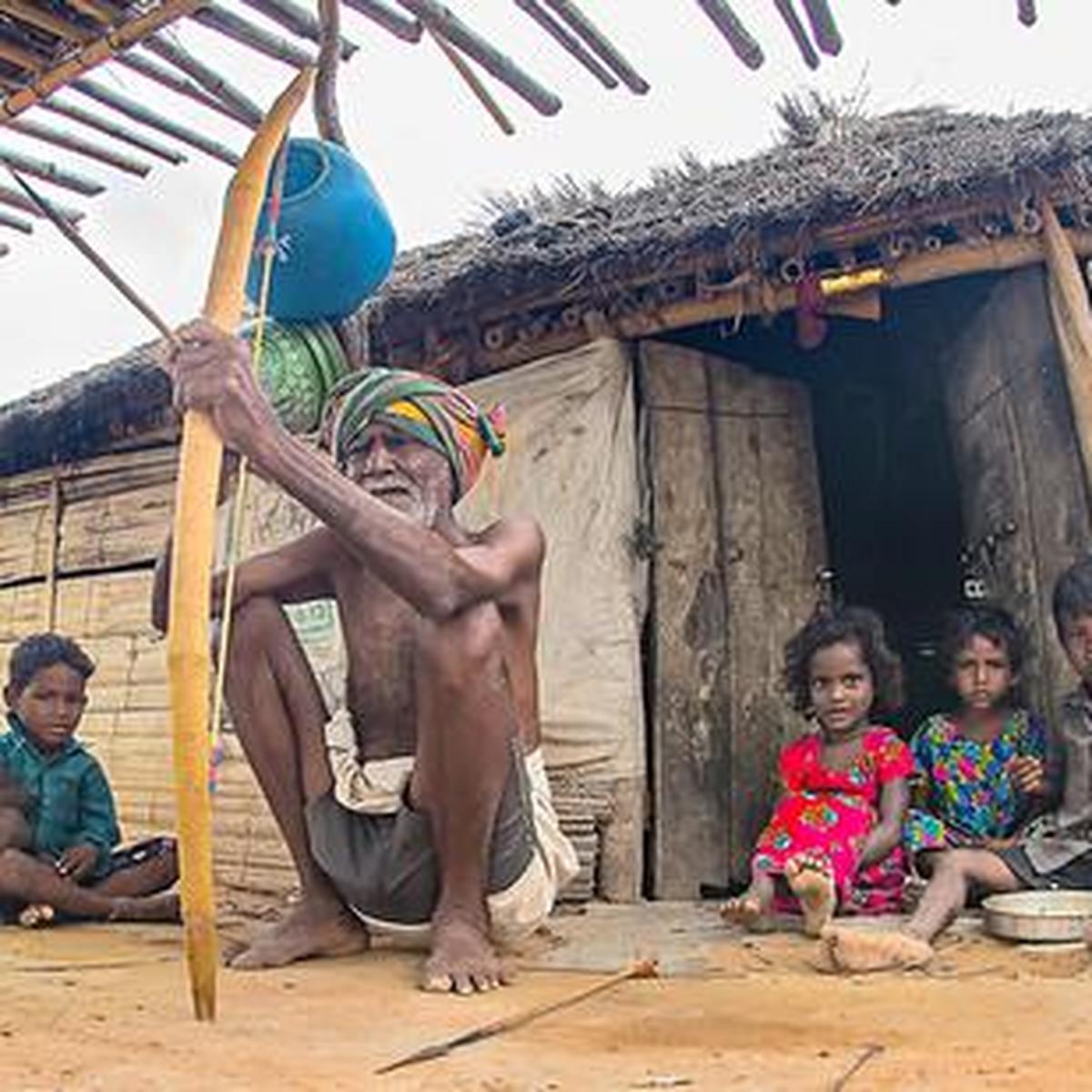
- 17 May 2025
In News:
In May 2025, the Telangana government announced the sanctioning of 10,000 Indiramma houses to Chenchu tribal families under a saturation approach in four Integrated Tribal Development Agencies (ITDA)—Utnur, Bhadrachalam, Munnanur, and EturuNagaram. An additional 700 units per ST assembly constituency have also been approved within these ITDA areas.This move aligns with the state’s commitment to improving housing infrastructure in tribal areas.
About Chenchu Tribe
Classification:
- Particularly Vulnerable Tribal Group (PVTG) in Andhra Pradesh
- Also found in Telangana, Karnataka, and Odisha
Habitat:
- Primarily inhabit the Nallamalai forests (Eastern Ghats)
- Chenchu settlements are called “Penta”, consisting of kin-based scattered huts
Language:
- Native Chenchu language (Dravidian family)
- Many also speak Telugu
Social Structure:
- Small conjugal families with gender equality
- Village elder, known as “Peddamanishi”, serves as the community authority
Livelihood:
- Forest-based subsistence lifestyle
- Depend on collection of non-timber forest produce (NTFPs) such as:
- Roots, tubers, fruits, beedi leaves, honey, gum, mohua flowers, tamarind
- Some serve as forest laborers, but mostly rely on traditional hunting and gathering
Religion & Culture:
- Worship local deities; blend of indigenous and Hindu practices
- Hold deep spiritual ties with the Srisailam Temple (dedicated to Lord Shiva and Devi Brahmaramba), which lies at the heart of their region
- Chenchus enjoy customary privileges at the Srisailam shrine
Dr. Ajay Kumar appointed as UPSC Chairman
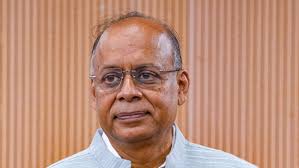
- 17 May 2025
In News:
Dr. Ajay Kumar, former Defence Secretary and a 1985-batch IAS officer of Kerala cadre, took oath as the new Chairman of the Union Public Service Commission (UPSC) on May 2025. The oath was administered by Lt. Gen. Raj Shukla, the senior-most member of the Commission, following the end of Preeti Sudan’s tenure on April 29, 2025.
Profile of Dr. Ajay Kumar:
- Academic Qualifications:
- B.Tech in Electrical Engineering – IIT Kanpur
- M.Sc. in Applied Economics – University of Minnesota, USA
- Ph.D. in Business Administration – Carlson School of Management, USA
- Key Positions Held:
- Managing Director, IT Department, Government of Kerala
- Secretary, Defence Production
- Director General, National Informatics Centre
- Secretary, Ministry of Defence
- E-Governance Contributions:
- Initiated digital platforms like Jeevan Pramaan, MyGov, PRAGATI, and Cloud First Policy
- Introduced biometric attendance systems and digital OPD registrations in AIIMS
He brings over 35 years of administrative experience in both state and central governments and has several publications in reputed journals.
Union Public Service Commission (UPSC) – At a Glance
Constitutional Backing:
- Established under Articles 315–323 of the Constitution
- Originally formed: October 1, 1926
- Became a constitutional body on January 26, 1950
Composition:
- Comprises a Chairman and other members, appointed by the President
- At least half the members must have held government office for 10+ years
- Presently, the Commission has vacancies for 2 members
Tenure:Chairman/Members hold office for 6 years or until 65 years of age, whichever is earlier
Resignation & Removal:
- Can resign by writing to the President
- Can be removed for misbehavior, only after an inquiry by the Supreme Court
Post-Tenure Restrictions:
- Chairman: Not eligible for any further government employment
- Members: Can be appointed as Chairman of UPSC or State PSC, but not to any other office of profit
Functions of UPSC:
- Central recruitment agency for:
- Civil Services Examination (CSE)
- Engineering Services (ESE)
- Combined Medical Services (CMS), and more
- Advises the government on:Recruitment rules, appointments, promotions, and disciplinary matters
Sakurajima Volcano Eruption
- 17 May 2025
In News:
Japan’s Sakurajima volcano, located in Kagoshima Prefecture on the southern island of Kyushu, recently erupted sending a dense ash plume 3,000 metres into the sky. The eruption originated from the Minamidake summit crater and was accompanied by a Level 3 volcanic alert, advising people to stay away from the vicinity.
Key Features of Sakurajima Volcano:
- Type: Stratovolcano (composite volcano)
- Geological Setting: Situated on a convergent plate boundary, formed from subduction-related volcanic activity.
- Structure: Comprises North Peak and South Peak, and lies on the southwestern rim of the Aira Caldera.
- Historical Significance: Was an island until the 1914 eruption, which connected it to the ?sumi Peninsula.
- Frequent Activity: One of Japan's most active volcanoes, experiencing daily minor eruptions and emitting continuous volcanic smoke.
Volcanic Characteristics:
- Lava Type:Andesitic – high in gas content and viscosity, leading to explosive eruptions.
- Hazards: Produces ash fall, pyroclastic flows, volcanic bombs, and toxic gases.
- Proximity to Populated Areas: Only 4 km from Kagoshima City, making it a high-risk volcano with strict monitoring by the Japan Meteorological Agency (JMA).
Impact and Preparedness:
- No injuries or major damages have been reported as of now.
- Ash fall warnings were issued for Kagoshima, Kumamoto, and Miyazaki prefectures.
- The eruption highlights Japan’s robust disaster preparedness and early warning systems, essential due to the country's location on the Pacific Ring of Fire.
Operation Keller

- 16 May 2025
In News:
On 13 May 2025, the Indian Army, in coordination with the J&K Police and CRPF, launched Operation Keller, a targeted counter-terrorism operation in the Keller forests of Shopian district, Jammu & Kashmir. The operation led to the elimination of three terrorists, including Shahid Kuttay, the chief of The Resistance Front (TRF) and the alleged mastermind behind the Pahalgam terror attack.
Key Objectives:
- Neutralise terrorists affiliated with The Resistance Front (TRF), a proxy of Lashkar-e-Taiba (LeT).
- Specifically eliminate Shahid Kuttay, involved in the April 2025 Pahalgam attack that killed 26 civilians.
- Secure volatile forested zones in South Kashmir to prevent future infiltrations and retaliatory threats.
Details of the Operation:
- Launch Date: 13 May 2025
- Location:Shoekal Keller forest area, Shopian district, J&K
- Conducted By: Indian Army (Rashtriya Rifles), J&K Police, CRPF
- Method: Intelligence-based search and destroy mission
- Outcome: Elimination of three hardcore terrorists after a fierce gunfight; operation ongoing.
Pahalgam Terror Attack Link:
- Posters announcing ?20 lakh bounty per terrorist involved in the Pahalgam killings were circulated in Pulwama.
- J&K Police released sketches identifying the three LeT-linked terrorists responsible.
- Operation Keller targeted the network allegedly behind this attack.
About Shopian District:
- Location: Southern Kashmir Valley; bordered by Pulwama, Anantnag, Kulgam, and PirPanjal mountains.
- Elevation: ~2,146 metres; experiences harsh winters (up to −7°C).
- Economy: Agriculture-based, especially apple orchards.
- History:
- Upgraded to district status in 2007 (earlier part of Pulwama).
- Lies along the historic Mughal Road connecting Lahore and Srinagar.
- Name Origin: Possibly from “Shah-payan” (royal stay) or “Shin-van” (snow forest).
Extended Fund Facility (EFF)

- 16 May 2025
In News:
Recently, the IMF Executive Board approved a $1 billion disbursement to Pakistan under the Extended Fund Facility (EFF). This brings total disbursements under the current EFF arrangement to $2.1 billion out of a total planned support of $7 billion.
What is the Extended Fund Facility (EFF)?
- Governed by: International Monetary Fund (IMF), part of the Bretton Woods Institutions.
- Purpose: To support countries facing medium-term balance of payments problems caused by structural economic weaknesses.
- Nature of Support:Loan (not a grant or aid), with extended repayment periods.
- Tenure: Typically spans over three or more years, with phased disbursements.
- Objective: Enables countries to implement structural reforms such as:
- Broadening the tax base
- Strengthening financial institutions
- Reducing fiscal deficits
- Managing inflation
Eligibility for EFF:
To qualify, countries must:
- Exhibit persistent balance of payments stress
- Have deep-rooted economic weaknesses (e.g., poor governance, low investment, weak tax systems)
- Show a willingness to undertake IMF-monitored reforms
Pakistan’s Economic Situation:
- Stagnant GDP: Estimated at $338 billion in 2023, lower than in 2017.
- High Inflation: Averaging over 20% between 2020–2024.
- Frequent Borrowing: Pakistan has received 28 IMF loans in 35 years, and also borrows from:
- China
- UAE and Saudi Arabia
- ADB, IDB, Paris Club, Nordic Development Fund
Key Challenges:
- Economic mismanagement
- Low savings and investment
- Infrastructure gaps
- Low female workforce participation
- High population growth
Why Did IMF Approve the 2025 Tranche?
The IMF approved the tranche based on positive macroeconomic developments:
- Reduced inflation: Down to 0.3% in April 2025
- Improved forex reserves
- Fiscal reforms: Implementation of the FY2025 budget and Agricultural Income Tax
- Credible reform measures: IMF noted Pakistan’s “significant progress” in restoring economic stability.
Golden Dragon 2025
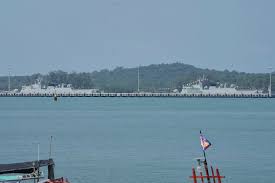
- 16 May 2025
In News:
In May 2025, Cambodia and China launched their largest-ever edition of the annual Golden Dragon military exercise, featuring coordinated land, sea, and air operations. This drill underscores deepening military and strategic cooperation between the two countries amidst shifting geopolitical alignments in Southeast Asia.
About Golden Dragon Exercise:
- Inception: Initiated in 2016, Golden Dragon is a bilateral military exercise between China and Cambodia.
- Objective: Strengthens defence ties, capacity building, and joint operational readiness.
- 2025 Theme: Focuses on joint counter-terrorism operations and humanitarian relief efforts, projecting it as a peace-oriented and technologically advanced drill.
Key Highlights
- Venue: Conducted at Ream Naval Base, located on Cambodia’s southern coast near Sihanoukville.
- Military Domains: Involves exercises across land, sea, and air.
- Technological Showcase:
- Reconnaissance and attack drones
- Surgical robots
- Robot dogs
- These technologies highlight an evolution toward AI-driven and robotic warfare capabilities.
Strategic and Geopolitical Significance:
- Ream Naval Base Expansion:
- China has funded upgrades to this naval base, raising concerns about possible dual-use military capabilities and Beijing's expanding naval footprint in the Gulf of Thailand.
- Cambodia denies hosting any exclusive foreign military presence but allows docking of ships from friendly nations, including recent arrivals from Japan, Vietnam, and China.
- China-Cambodia Relations:
- Cambodia is considered China’s closest ally in Southeast Asia.
- China is a major economic and military benefactor, with growing influence in Cambodian infrastructure and defence.
- Counterbalance to U.S. Influence:
- The drill coincides with the U.S.-led Balikatan exercise, which includes forces from the U.S., Philippines, Australia, and Japan.
- Reflects the strategic competition between China and the U.S. in the Indo-Pacific region.
- “String of Pearls” Strategy:
- China’s involvement in ports like Ream (Cambodia), Hambantota (Sri Lanka), and Gwadar (Pakistan) reflects its strategy to establish logistical and strategic outposts across the Indian Ocean Region (IOR).
India assembles first Chromosome-Level Genome of the Yak
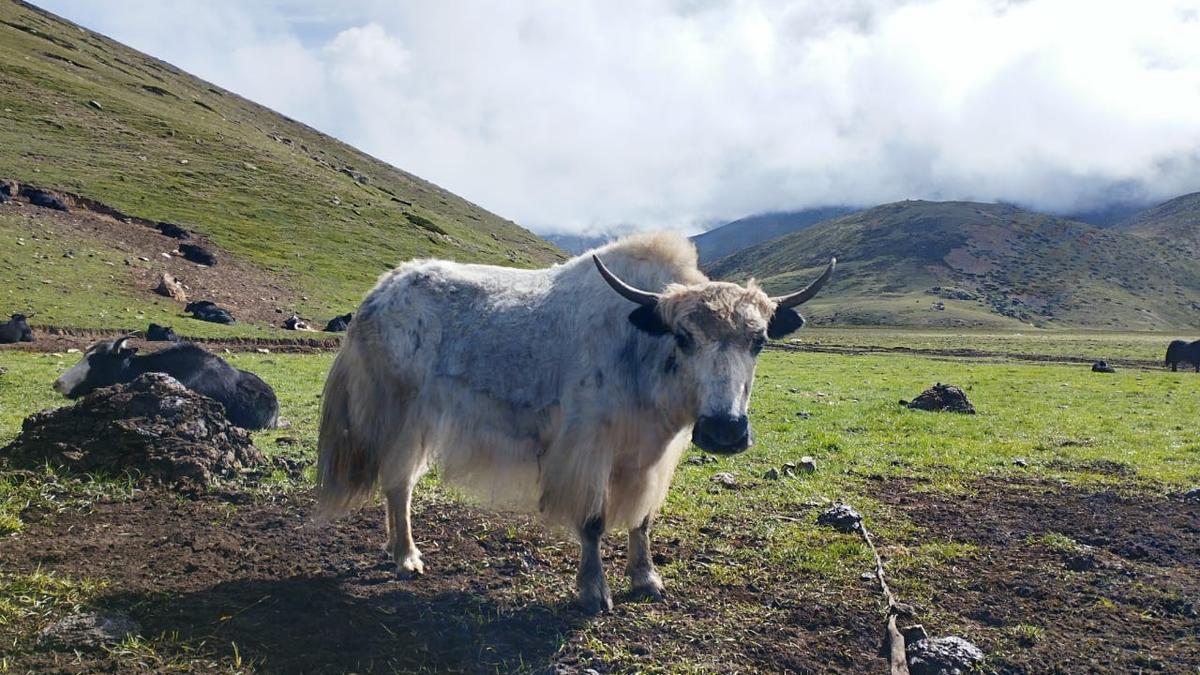
- 16 May 2025
In News:
India has achieved a significant breakthrough in livestock genomics with the successful assembly of the first-ever chromosome-level genome of the Indian yak (Bos grunniens). The initiative was led by the Indian Council of Agricultural Research (ICAR) through collaboration among four of its premier institutes.
Key Institutions Involved:
- ICAR-National Research Centre on Yak (NRC-Yak), Dirang, Arunachal Pradesh
- ICAR-Indian Institute of Agricultural Biotechnology (IIAB), Ranchi
- ICAR-Central Institute for Research on Cattle (CIRC), Meerut
- ICAR-Central Institute for Research on Cattle (CIRC), Nagpur
Importance of the Indian Yak:
- Known as the “Ship of the Himalayas,” the domestic yak is crucial to the livelihoods of high-altitude pastoral communities.
- Provides meat, milk, fibre, dung for fuel, and is used for transport in rugged terrain.
- Found at elevations above 7,000 feet in regions like Ladakh, Sikkim, Himachal Pradesh, Arunachal Pradesh, and Jammu & Kashmir.
- Exhibits extraordinary cold tolerance, making it a valuable model for studying climate adaptation.
Scientific Achievement:
- Researchers used long-read sequencing technology and advanced bioinformatics tools to develop a chromosome-level genome assembly.
- This allows precise gene mapping, facilitating identification of genes related to:
- Cold tolerance
- Disease resistance
- Milk and meat quality
- Reproductive traits
Benefits and Applications:
- Conservation: Helps counter threats like genetic erosion, climate change, and loss of grazing lands.
- Livestock Improvement: Enables targeted breeding programs for improved productivity and adaptability.
- Scientific Research: Offers comparative insights into bovine genetics and facilitates allele mining for key traits.
- Sustainable Development: Aids in the socio-economic upliftment of yak herders by improving livestock performance.
About ICAR-NRC on Yak:
- Established in 1989, located in Dirang, Arunachal Pradesh.
- Premier institution for research on yak husbandry, health, nutrition, and genetics.
- Works to preserve the unique genetic resources of Himalayan livestock.
Desalination Technology
- 16 May 2025
The Defence Research & Development Organisation (DRDO), under the Aatmanirbhar Bharat initiative, has successfully developed a high-pressure, nanoporous, multilayered polymeric membrane for seawater desalination.
Developing Agency:
- The technology was developed by the Defence Materials Stores Research & Development Establishment (DMSRDE), Kanpur, a DRDO laboratory.
- It addresses the Indian Coast Guard's (ICG) operational needs aboard Offshore Patrol Vessels (OPVs), especially to counter instability caused by chloride ions in saline water.
Salient Features of the Technology:
- Indigenous development completed in a record time of 8 months.
- Successfully tested in existing desalination plants aboard ICG vessels.
- Undergoing 500-hour operational testing before final clearance by ICG.
- Can be adapted for use in coastal areas for civilian desalination purposes as well.
Strategic Significance:
- Enhances onboard freshwater self-reliance for maritime security forces.
- Reduces dependency on imported technologies.
- Contributes to India’s self-reliance in critical defence and water technologies.
Desalination Technology: Key Concepts
What is Desalination?
Desalination is the process of removing dissolved salts and minerals from seawater or brackish water to produce potable or industrial-grade water.
Main Technologies Used:
- Reverse Osmosis (RO):
- Pressure-driven membrane filtration.
- Uses semi-permeable membranes to separate salts from water.
- Thermal Desalination:Involves evaporation followed by condensation to obtain fresh water.
Working of RO Desalination:
- In osmosis, water naturally moves from low solute to high solute concentration across a membrane.
- In reverse osmosis, external pressure is applied to force water from high solute (saline) to low solute (freshwater) side.
- RO membranes allow only water molecules to pass, filtering out salts and impurities.
- Seawater with ~35,000 ppm Total Dissolved Solids (TDS) is reduced to 200–500 ppm, making it drinkable.
Axions and the HAYSTAC Experiment

- 15 May 2025
In News:
A recent study published inPhysical Review Letters reports that while the HAYSTAC experiment did not detect axions, it achieved a major technological milestone. The experiment significantly broadened the search range for axion masses and their interaction strengths, marking substantial progress in the hunt for dark matter.
What are Axions?
Axions are theoretical subatomic particles proposed in the late 1970s as a solution to the strong CP (Charge-Parity) problem in quantum chromodynamics (QCD). This problem involves the puzzling absence of CP violation in strong nuclear interactions, contrary to expectations.
- Axions were introduced to dynamically neutralize CP-violating effects by adjusting the QCD theta (θ) parameter to nearly zero.
- Over time, they have also gained prominence as a leading candidate for dark matter, the elusive form of matter believed to make up the bulk of the universe’s mass.
Why Axions matter in Dark Matter Research
Axions are particularly attractive as Cold Dark Matter (CDM) candidates due to their theoretical and cosmological properties:
- Electromagnetically neutral
- Extremely low mass
- Very weak interactions with ordinary matter and radiation
Foundational work by physicists like Sikivie, Wilczek, Dine, and Preskill demonstrated that axions produced in the early universe could account for the observed dark matter density—roughly 85% of the universe's matter content.
The HAYSTAC Experiment: A Precision Tool for Axion Detection
HAYSTAC (Haloscope At Yale Sensitive To Axion Cold Dark Matter) is a collaborative project led by Yale, Berkeley, and Johns Hopkins University, designed to detect axions by converting them into detectable photons using a haloscope.
Key Features:
- Haloscope Design: A microwave cavity placed in a strong magnetic field, following a design originally proposed by Pierre Sikivie.
- Quantum Squeezing: HAYSTAC is one of the few experiments—alongside Advanced LIGO—that uses quantum squeezing to reduce quantum noise, thereby enhancing measurement precision.
What is Quantum Squeezing?
Quantum squeezing is a technique that manipulates quantum uncertainty to minimize noise in one variable while tolerating increased uncertainty in another. This helps:
- Suppress random fluctuations, and
- Improve the signal-to-noise ratio—vital for detecting rare, weak signals like those possibly produced by axions.
Phase II Highlights of HAYSTAC
- Conducted the widest frequency sweep to date in the axion mass range.
- Marked a technical breakthrough in detection sensitivity.
- Although axions were not detected, the results helped rule out certain mass-coupling combinations, narrowing the parameter space for future searches.
Crohn’s Disease
- 15 May 2025
In News:
A former SpaceX employee has filed a lawsuit against the company, alleging wrongful termination. According to the claim, the individual was fired due to frequent restroom visits linked to Crohn’s disease, a chronic medical condition. The case has drawn attention to the difficulties faced by individuals managing long-term illnesses in demanding work environments.
Key Details:
Crohn’s disease is a type of inflammatory bowel disease (IBD) that causes chronic inflammation of the digestive tract. It is a lifelong condition that can significantly impact quality of life and daily functioning.
Key Features:
- Nature of the Disease:A persistent and often progressive condition marked by inflammation in different sections of the digestive tract, most frequently affecting the end of the small intestine (ileum) and the beginning of the large intestine (colon).
- Extent of Inflammation:Inflammation may penetrate deep into the bowel wall, leading to pain, damage, and complications over time.
- Common Symptoms:
- Persistent diarrhea
- Abdominal pain and cramping
- Weight loss
- Fatigue and sometimes malnutrition
Symptoms can vary in severity and may appear intermittently, often referred to as “flare-ups.”
Complications and Impact
Crohn’s disease can be debilitating and may result in serious complications, including:
- Intestinal blockages
- Fistulas (abnormal connections between body parts)
- Abscesses
- Nutritional deficiencies
Treatment and Management
- No Cure Available:While there is currently no cure for Crohn’s disease, medical therapies can effectively manage symptoms and inflammation.
- Goals of Treatment:
- Inducing and maintaining remission
- Healing affected intestinal tissues
- Improving overall quality of life
- Treatment Approaches:
- Anti-inflammatory medications
- Immune system suppressors
- Dietary changes
- In severe cases, surgery may be required
Many individuals with Crohn’s can lead productive lives with appropriate treatment and support.
Indian Grey Wolf
- 15 May 2025
In News:
The Indian grey wolf, a keystone predator crucial to maintaining the ecological balance of India’s grasslands, is facing a sharp population decline. The primary threat stems from increasing encounters with feral (free-ranging) dogs, which pose risks of disease transmission, competition, and hybridization.
Profile:
- Scientific Classification:A subspecies of the grey wolf (Canis lupus), native to the Indian subcontinent and parts of Southwest Asia.
- Habitat:Inhabits scrublands, semi-arid grasslands, and pastoral agro-ecosystems, often overlapping with human-dominated landscapes.
- Physical Traits:Intermediate in size between the Tibetan and Arabian wolves, the Indian grey wolf is adapted to warmer climates and lacks the dense winter coat of its colder-climate relatives.
- Behavioral Characteristics:
- Primarily nocturnal
- Hunts in small packs
- Less vocal than other wolf subspecies
- Geographical Range:Extends from Israel in the west to the Indian subcontinent in the east.
Legal and Conservation Status
- IUCN Red List:Least Concern globally, but considered locally endangered in India due to habitat loss and increasing threats.
- CITES Listing:Appendix I – Species facing extinction, with trade subject to strict regulation.
- Wildlife (Protection) Act, 1972: Listed under Schedule I, ensuring maximum legal protection within India.
Conservation Dilemma: Feral Dogs
- The Maharashtra Forest Rules, 2014 permit the removal of non-wild species, like dogs, from protected forest areas if they pose a threat to native wildlife.
- Despite this provision, forest officials often refrain from culling dogs due to ethical and animal rights concerns.
- Vaccination programs are proposed as alternatives to mitigate disease risks like canine distemper virus (CDV), but implementation remains logistically challenging.
Key Threats
- Disease Transmission: Feral dogs carry zoonotic diseases such as CDV, which can infect and decimate wolf populations.
- Hybridization: Interbreeding with dogs leads to genetic dilution, threatening the purity and survival of the species.
- Competition: Feral dogs compete with wolves for food and territory.
Case Study: Kadbanwadi Grassland, Maharashtra
- Location: Situated in Indapur tehsil, Pune district, this grassland spans over 2,000 hectares.
- Biodiversity Hotspot: Home to species like the Bengal fox, striped hyena, Brahminy kite, and the Indian grey wolf.
- Cultural Coexistence: The local shepherd communities have shared a mutually respectful relationship with wolves over generations, reflecting a model of harmonious coexistence.
JenuKuruba Tribe
- 15 May 2025
In News:
In a significant move, families from the JenuKuruba tribe have begun returning to their ancestral lands located within Nagarhole National Park. This reoccupation marks an important step in their decades-long struggle to reclaim traditional forest habitats.
Who are the JenuKurubas?
The JenuKuruba are an indigenous tribal community classified as a Particularly Vulnerable Tribal Group (PVTG) in India. They are primarily concentrated in the Kodagu and Mysuru districts of Karnataka.
- Etymology:The term "JenuKuruba" derives from Kannada—“jenu” means honey, reflecting their age-old practice of honey collection. Traditionally, they depend on forest produce, minor agriculture, and gathering activities for their livelihood.
- Alternate Names:They are also known as Then Kurumba or KattuNaikar in various local contexts.
Settlement and Lifestyle
- Habitat:The community resides in compact settlements known as “Hadi.”
- Living Style:They follow a semi-nomadic lifestyle, shaped by their deep relationship with forest ecosystems rather than external authorities like the state, police, or religious institutions.
Community Structure
- Governance:
The JenuKurubas follow a traditional leadership hierarchy that includes:- Yajamana (Headman) – responsible for social matters
- Gudda (Ritual Head) – oversees religious ceremonies
While the Gudda handles spiritual issues, all other community functions are managed locally under the guidance of the Yajamana.
Belief System and Culture
- Spiritual Beliefs:Their religion is rooted in the worship of supernatural spirits and deities unique to their tradition. These spiritual entities have distinct identities and are central to their worldview.
- Cultural Expressions:Music, dance, and oral storytelling are vital cultural practices. Their traditional songs and dances revolve around themes of agriculture, marriage, mythology, and faith.
Significance of the return to Nagarhole
The recent return of JenuKuruba families to Nagarhole represents not just a physical homecoming, but a cultural revival. For the tribe, the forest is not just a resource—it is sacred ground tied to their identity, heritage, and spiritual life.
Their reoccupation reopens long-standing debates about conservation, indigenous rights, and forest governance in India.
Piprahwa Gems Controversy
- 15 May 2025
In News:
A group of international Buddhist scholars and monastics has voiced strong objections to the proposed auction of the Piprahwa Gems. These jewels, long venerated as relics intimately linked to the historical Buddha, are at the center of a heated debate over their sale.
Background of the Piprahwa Gems
- Discovery Site: The gems were unearthed in 1898 at Piprahwa, in present-day Uttar Pradesh, where a stupa (Buddhist burial monument) once stood.
- Historical Significance: An inscription on one of the reliquaries claims the stupa housed the physical remains of the Buddha, who passed away circa 480 BCE.
- Excavation: The find was made by William Claxton Peppé, a British colonial engineer, during work on his estate. It marked the first scientifically credible recovery of Buddha’s relics in modern times.
Composition and Distribution
- Material Variety: The collection comprises roughly 1,800 pieces, including amethysts, coral, garnets, pearls, rock crystal, shells, and gold, fashioned into beads, pendants, and other ornaments, as well as unworked specimens.
- Custodial History: Under the 1878 Indian Treasure Trove Act, the British Crown claimed the entire hoard. Most of these gems were subsequently transferred to the Indian Museum in Kolkata. Peppé retained around one-fifth of the collection—items colonial officials deemed “duplicates”—which later entered private hands.
- International Gift: The British gifted the stupa’s bone and ash fragments to King Chulalongkorn of Siam (modern-day Thailand), further dispersing relics tied to the find.
Contemporary Concerns
Many in the Buddhist community argue that auctioning these gems violates their sacred status and severs the spiritual connection believers feel to the Buddha’s remains. They call for the jewels to remain in public or religious trust, rather than being treated as collectors’ items in the art market.
Geotubing
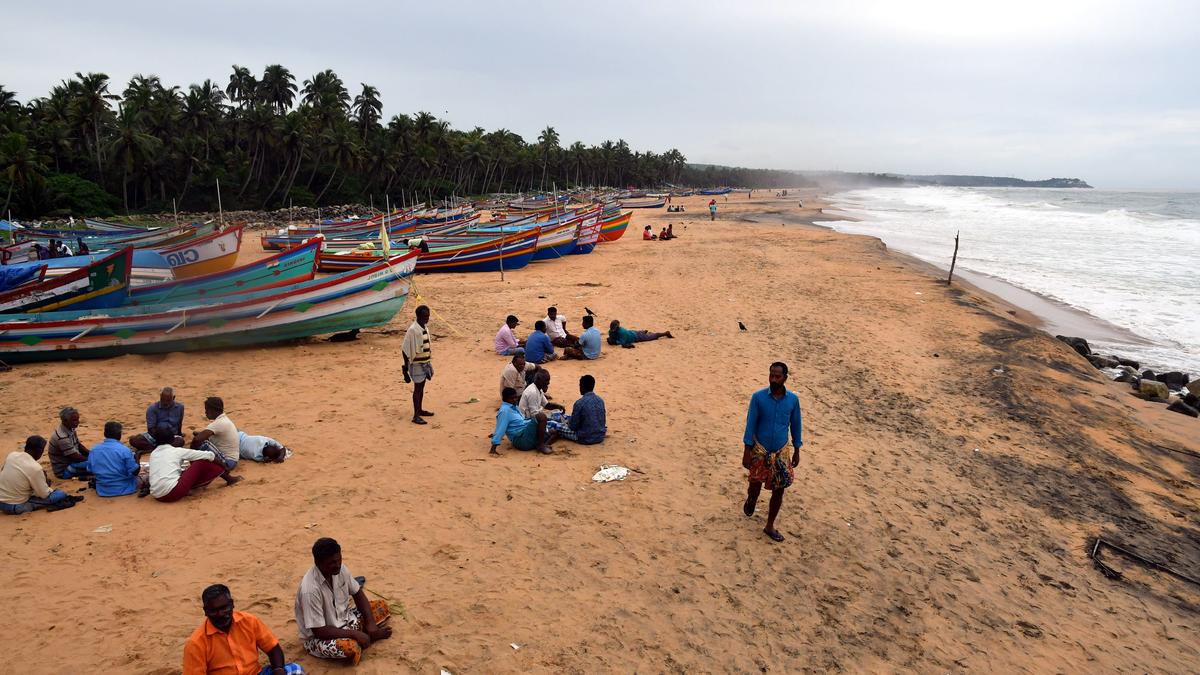
- 14 May 2025
In News:
A joint study conducted by the National Institute of Ocean Technology (NIOT) and the Kerala State Coastal Area Development Corporation (KSCADC) has confirmed the effectiveness of geotubing-based offshore breakwaters in managing coastal erosion at Poonthura, Kerala. The installation not only mitigated shoreline erosion but also contributed to sustainable beach formation—highlighting the method's potential for broader coastal protection strategies.
What is Geotubing?
Geotubing involves the use of large geotextile tubes, filled with sand or slurry, which are strategically placed underwater to reduce wave energy and prevent shoreline erosion. At Poonthura, three vertical layers of 15-meter circumference geotubes were installed perpendicular to the coast, forming submerged breakwaters that trap sediment and promote natural sand deposition.
Materials and Construction
- Geotubes Composition:Constructed from high-performance woven geotextiles, typically made of polypropylene (PP) or polyester (PET).
- Material Properties:These fabrics are designed to be permeable, durable, and resistant to UV radiation, chemical exposure, and microbial degradation, making them well-suited for long-term marine use.
Key Functional Features
- Wave Energy Dissipation:Submerged geotubes act as barriers that absorb and deflect wave energy before it reaches the shoreline.
- Beach Nourishment Support:By slowing wave action, the geotubes encourage natural sand accumulation, supporting beach regeneration.
Advantages of Geotubing
- High Durability:Withstands tensile stress and harsh environmental conditions, including chemical and biological exposure.
- Environmentally Friendly:Geotubing is non-toxic and contributes to coastal and wetland restoration without polluting ecosystems.
- Cost-Effective:More economical than traditional concrete or steel structures and easier to install, particularly in remote or variable terrains.
- Customizable Design:Geotubes can be tailored in size and configuration to suit specific project requirements and geographical conditions.
- Multi-Functional Utility:Beyond coastal defense, geotubes are effective in flood management, riverbank stabilization, sludge dewatering, and landfill containment.
Broader Applications of Geotubing
- Coastal Protection:Used in breakwaters, seawalls, and dune reinforcement projects.
- River and Lake Management:Effective for stabilizing riverbanks and controlling sedimentation.
- Wastewater Treatment:Applied in industrial and municipal dewatering processes.
- Infrastructure Support:Utilized in the construction of roads, railways, ports, and reservoirs.
- Environmental Remediation:Useful for site isolation, pollution control, and ecosystem restoration.
MY Bharat Portal
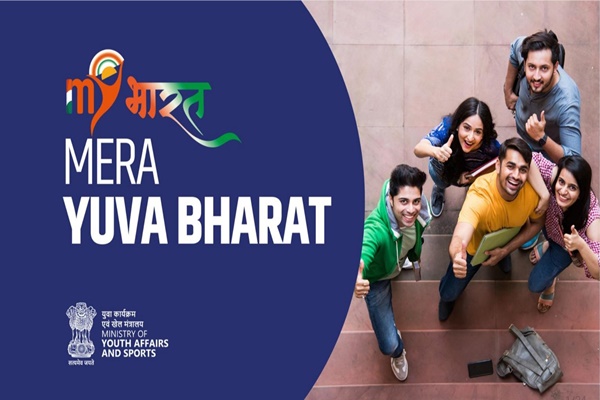
- 14 May 2025
In News:
During a recent address in Patna, the Union Minister called on India’s youth to actively engage with the ‘MeraYuva Bharat (MY Bharat)’ portal. Emphasizing the critical role of young people in shaping the nation’s future, he encouraged them to become active participants in developmental initiatives and contribute meaningfully to the country’s progress.
About MY Bharat Portal
What is MY Bharat?
Launched on October 31, 2023—the birth anniversary of Sardar Vallabhbhai Patel—MeraYuva Bharat (MY Bharat) is an autonomous institution under the Ministry of Youth Affairs and Sports. It serves as a technology-driven, institutional platform designed to empower youth and enable youth-led transformation across India.
Objectives of MY Bharat
- Promote inclusive and active youth participation in nation-building activities.
- Prepare young individuals to be agents of change during Amrit Kaal, aligning with the vision of Viksit Bharat@2047.
- Ensure equal access to opportunities for learning, volunteering, and mentorship.
Key Features of the Portal
- Volunteer Mobilisation:Enables youth to engage in public welfare initiatives, disaster relief operations, and awareness campaigns across various sectors.
- Digital Youth Profiles:Participants can create profiles to showcase their skills, interests, and experiences, helping them connect with relevant programs and organizations.
- Experiential Learning Opportunities:Facilitates hands-on project work with local governments, private enterprises, and NGOs, offering real-world exposure.
- Mentorship and Peer Networking:Provides structured access to experienced mentors and national peer networks, fostering guidance and collaboration.
- Government Scheme Awareness:Empowers youth to act as grassroots ambassadors, promoting awareness of various government schemes within their communities.
State of the World’s Nursing 2025
- 14 May 2025
In News:
The World Health Organization’s upcoming “State of the World’s Nursing 2025” report raises an urgent alarm over the deepening global nursing shortage. It projects that by 2030, 70% of the global shortfall will be concentrated in Africa and the Eastern Mediterranean regions, underscoring the need for immediate and strategic workforce interventions.
Nursing in India: Current Status and Challenges
India is grappling with a critical shortage of nursing professionals, falling short of global standards in several key areas:
- Nurse-to-Population Ratio:India currently has approximately 30 nurses per 10,000 people, which is below the WHO-recommended threshold of 44.5 health workers per 10,000.
- Nursing Education:While the country has significantly increased the number of nursing graduates, quality concerns, infrastructure limitations, and faculty shortages persist across institutions.
- Migration Trends:India remains one of the leading exporters of trained nurses, especially to countries like the UK, Gulf nations, and Australia, contributing to a domestic workforce drain.
- Workforce Retention:Persistent issues such as low wages, limited opportunities for career advancement, and unsafe or stressful working environments contribute to high attrition rates.
Key Issues in India's Nursing Sector
- Inadequate Workforce Availability:India does not meet the WHO’s benchmark for health worker density, with rural areas facing the most severe shortages.
- Urban-Rural Imbalance:A large concentration of nurses in urban private hospitals severely restricts healthcare access in Primary and Community Health Centres (PHCs and CHCs) in rural regions.
- Poor Working Conditions:Nurses frequently endure long working hours, delayed salaries, insufficient mental health support, and unsafe work environments, which discourage long-term retention.
- Lack of Leadership Representation:The absence of Chief Nursing Officers (CNOs) at both state and national levels weakens the profession’s influence in health policy and governance.
- Limited Public Investment:Constraints in fiscal capacity and inadequate infrastructure hinder both the training and employment of nursing professionals.
- International Migration Without Compensation:The high rate of nurse outmigration is not matched by equitable bilateral agreements, leaving India's healthcare system vulnerable and under-resourced.
Strategic Recommendations:
- Expand Training Infrastructure:Increase the number of nursing colleges with a focus on faculty recruitment and clinical infrastructure, in line with the National Education Policy’s emphasis on vocational education.
- Strengthen Leadership and Governance:Establish Chief Nursing Officers at state and national levels, and bolster the role of nursing councils to advocate for reforms and oversee standards.
- Enhance Retention Strategies:Improve remuneration, ensure workplace safety, offer mental health support, and create clear career progression pathways to retain talent.
- Promote Rural Deployment:Introduce bonded scholarships, financial incentives, and housing support to encourage nursing professionals to serve in underserved rural regions.
- Leverage Technology and AI:Incorporate blended learning models, train nurses in electronic health record systems, and integrate AI-driven modules into nursing curricula for future-ready skills.
- Foster Fair International Cooperation:Develop bilateral agreements (e.g., India–UK healthcare MoUs) that ensure reciprocal benefits and support domestic capacity-building when nurses migrate abroad.
Raika Tribe
- 14 May 2025
In News:
The Raika community's deep-rooted knowledge of pasture cycles, animal health, and biodiversity continues to play a vital role in sustaining the delicate ecological balance of Rajasthan’s arid regions.
Who are the Raikas?
The Raika tribe, also known as Rabaris, is an indigenous pastoralist community predominantly residing in the arid and semi-arid landscapes of Rajasthan, especially around Kumbhalgarh in Rajsamand district.
Their identity is intricately linked to camel herding, particularly the breeding of the hardy Marwari camel—a breed renowned for its strength, endurance, and adaptability to desert conditions.
Cultural and Ecological Significance
For the Raikas, camel herding is more than just a livelihood—it is a way of life. Their cultural practices, seasonal migrations, and oral traditions are closely tied to their pastoral role.
Over generations, they have cultivated extensive traditional knowledge about:
- Pasture Cycles: Insight into optimal grazing periods and routes to maintain vegetation health.
- Animal Health: Natural methods to ensure the well-being of livestock, particularly camels.
- Biodiversity Management: Sustainable herding practices that promote ecological resilience.
Their traditional migratory routes enable camels to graze on medicinal desert plants, which not only improve animal health but also contribute to preserving the region’s unique biodiversity and ecological stability.
PL-15 Missile
- 14 May 2025
In News:
Amid rising tensions between India and Pakistan, a fully intact Chinese-made PL-15 long-range air-to-air missile has reportedly been recovered in Hoshiarpur, Punjab. The incident has sparked security and strategic concerns, given the missile's advanced capabilities and origin.
Overview of the PL-15 Missile
Also known as the "Thunderbolt-15," the PL-15 is a cutting-edge beyond-visual-range air-to-air missile (BVRAAM) developed by China’s 607 Institute and produced by the China Aerospace Science and Industry Corporation (CASIC). It is specifically designed to engage enemy aircraft at extended distances, far beyond the visual range of the launching platform.
Key Features:
- Propulsion and Speed:The missile is powered by a dual-pulse solid-propellant rocket motor, enabling it to reach speeds of over Mach 5.
- Range Capabilities:The domestic Chinese version has an estimated operational range of 200 to 300 km. The export version, the PL-15E, is officially rated for a maximum range of 145 km, though in practice this may be limited to 100–120 km depending on the launch conditions and platform.
- Warhead:It carries a high-explosive fragmentation warhead weighing between 20 and 25 kg, engineered to effectively neutralize maneuvering aerial targets.
- Guidance System:The PL-15 is equipped with an advanced guidance package that includes:
- Inertial navigation
- Beidou satellite updates
- Two-way datalink for real-time mid-course adjustments
- Terminal active radar homing with an AESA (Active Electronically Scanned Array) radar seeker
NiveshakShivir

- 13 May 2025
In News:
In May 2025, the Investor Education and Protection Fund Authority (IEPFA), under the Ministry of Corporate Affairs, in collaboration with the Securities and Exchange Board of India (SEBI), convened a strategic preparatory meeting at SEBI’s Mumbai office to launch the “NiveshakShivir” initiative. This nationwide investor outreach program aims to facilitate the reclamation of unclaimed dividends and shares by investors across India.
Key Features of “NiveshakShivir”
- Investor Helpdesks: Physical helpdesks will be set up to enable investors to interact directly with company representatives and Registrars and Transfer Agents (RTAs) for end-to-end assistance in recovering unclaimed assets.
- Digital Search Facility: IEPFA provides an online portal (https://iepfa.gov.in/login) where shareholders can check if their shares have been transferred to the IEPF and file claims using Form IEPF-5.
- Streamlined Process: Clear guidance is provided for shareholders holding shares in dematerialized or physical form to verify and reclaim their unclaimed dividends and shares efficiently.
- Coverage: The initiative is set to launch first in Mumbai and Ahmedabad, with plans to expand to other cities with high volumes of unclaimed investor assets.
Actions for Shareholders
- Demat Shareholders: Are encouraged to directly contact respective companies for clarification regarding shares liable for transfer to IEPFA.
- Physical Shareholders: Should verify share status on the IEPFA website and claim refunds if shares have been transferred.
- The initiative reduces dependence on intermediaries and improves transparency and efficiency in the recovery process.
About the Investor Education and Protection Fund Authority (IEPFA)
- Legal Basis: Established under Section 125 of the Companies Act, 2013.
- Function: Operates under the Ministry of Corporate Affairs to protect investor interests, promote financial literacy, and manage the corpus of unclaimed dividends, matured deposits, and shares transferred by companies.
- Objective: To foster a transparent, investor-friendly financial ecosystem through outreach and education programs like “NiveshakShivir.”
India and Chile Sign Terms of Reference for CEPA Negotiations
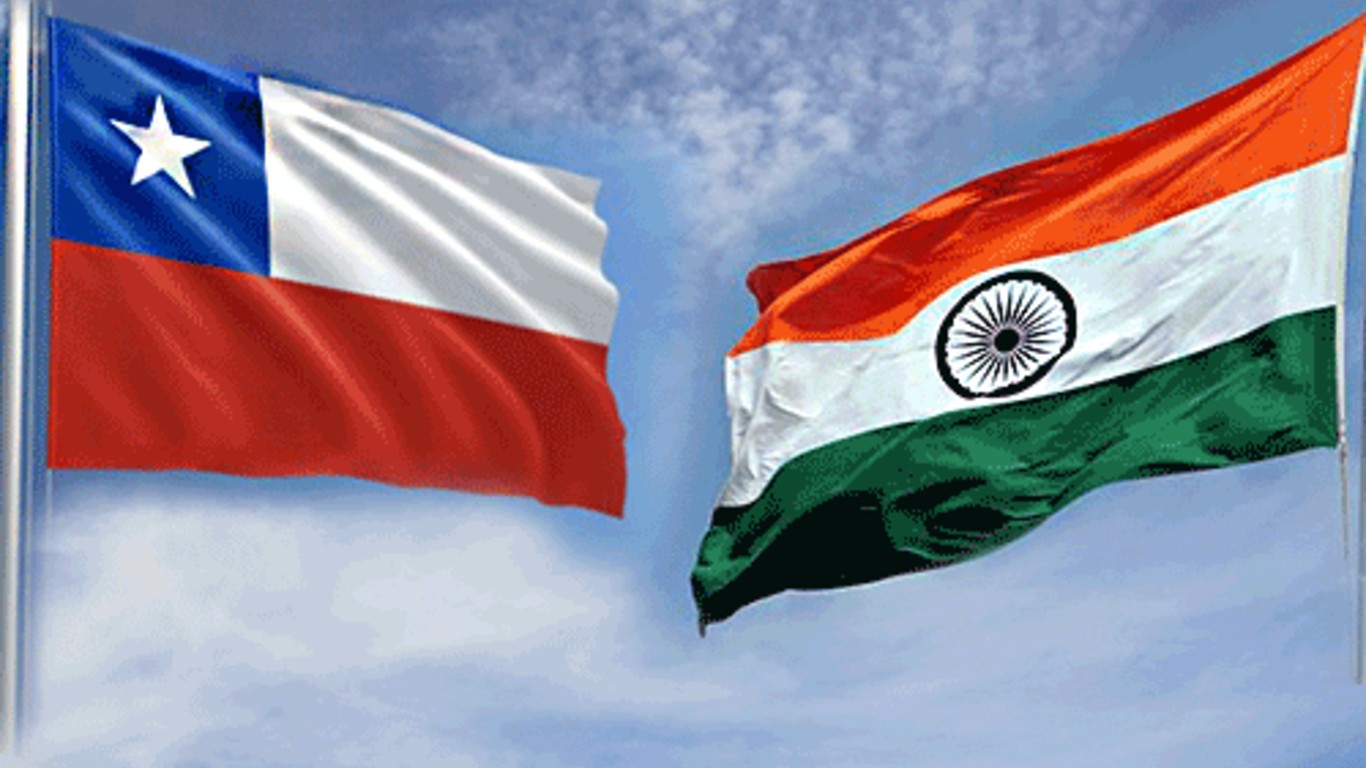
- 13 May 2025
In News:
Recently, India and Chile signed the Terms of Reference (ToR) to initiate negotiations for a Comprehensive Economic Partnership Agreement (CEPA), marking a significant step toward deepening bilateral economic ties.
Background and Significance
- The CEPA aims to expand and build upon the existing Preferential Trade Agreement (PTA) between the two countries by covering a broader range of sectors including digital services, investment promotion, MSMEs, and critical minerals.
- India and Chile share warm, strategic bilateral relations strengthened over years through high-level exchanges. The economic partnership began with a Framework Agreement in 2005, followed by a PTA in 2006, an expanded PTA effective from 2017, and further discussions towards CEPA since 2019.
- A Joint Study Group report finalized in April 2024 laid the foundation for advancing to a CEPA to unlock the full trade and investment potential between the two nations.
- The recent State visit of Chile’s President Gabriel Boric Font to India in April 2025 reaffirmed both countries’ commitment to enhancing trade frameworks and fostering a balanced, ambitious, and mutually beneficial economic agreement.
About Chile: Geopolitical and Economic Profile
- Chile is a long, narrow South American country bordered by Peru and Bolivia to the north, Argentina to the east, and the Pacific Ocean to the west.
- It shares the longest border in South America with Argentina, which is also the third-longest international border worldwide.
- Key geographical features include the Andes Mountains (the world’s longest continental mountain range), the Atacama Desert (driest non-polar desert globally), the Loa River (Chile’s longest river, approx. 440 km), and Ojos del Salado volcano (world’s highest active volcano at 6,880 meters).
- Situated on the Pacific Ring of Fire, Chile is prone to frequent earthquakes and tsunamis.
- Chile is the world’s largest producer of copper and a significant member of the “Lithium Triangle” (alongside Argentina and Bolivia), holding over 75% of global lithium reserves found in salt flats.
- Other important resources include molybdenum, iron ore, timber, hydropower, and precious metals.
Importance for India
- The CEPA negotiations with Chile are expected to enhance trade and investment flows, promote MSMEs, and strengthen cooperation in critical sectors such as minerals and digital services.
- This move aligns with India’s broader strategy to diversify economic partnerships globally and deepen ties with Latin American countries.
- Enhanced economic integration with Chile will boost employment, trade balance, and strategic cooperation between the two nations.
Arnala
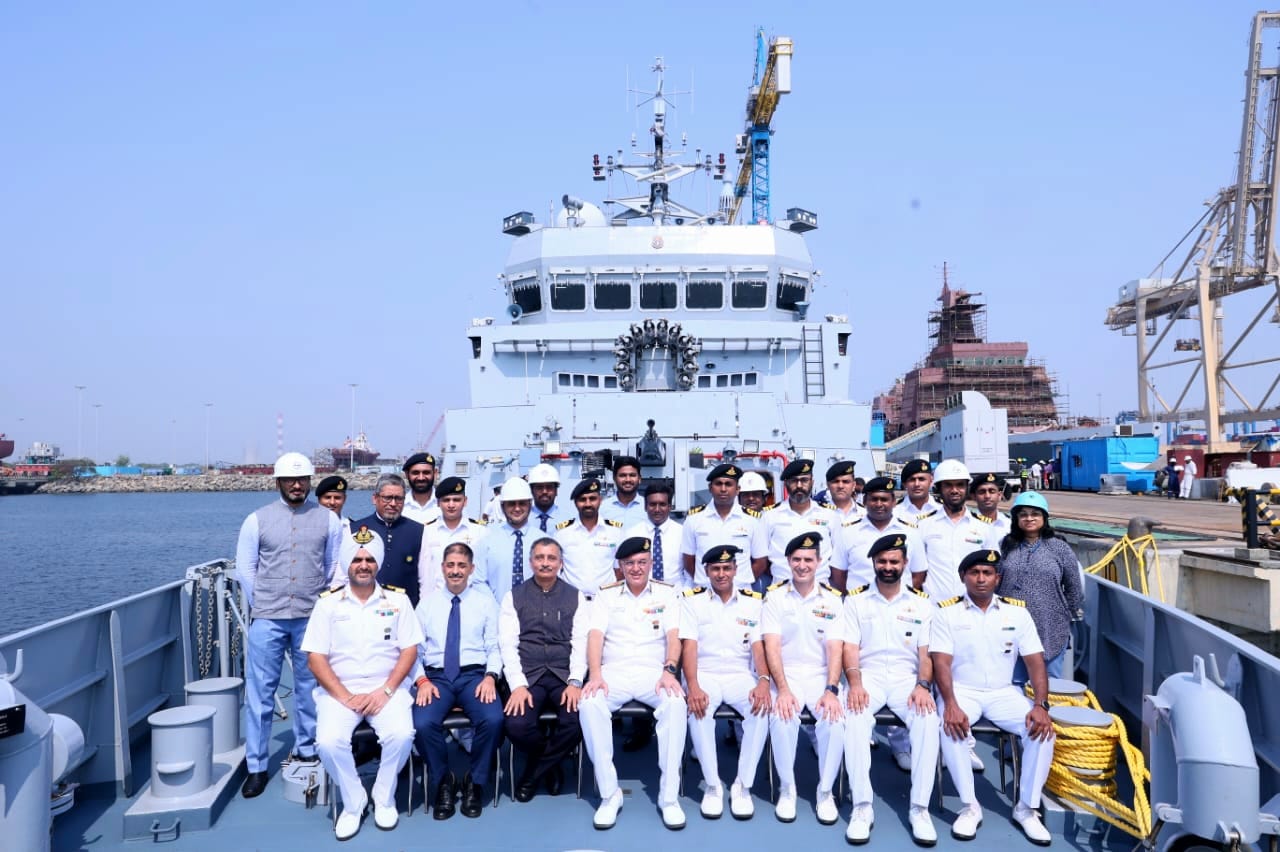
- 13 May 2025
In News:
Recently, the Indian Navy received Arnala, the first of eight indigenously designed and built Anti-Submarine Warfare Shallow Water Crafts (ASW SWCs). The vessel was constructed by Garden Reach Shipbuilders and Engineers (GRSE), Kolkata, in partnership with M/s L&T Shipyard, Kattupalli, under a Public-Private Partnership (PPP), exemplifying the growing collaboration in India’s defence manufacturing sector.
Key Features and Significance
- Arnala is named after the historic Arnala Fort located off Vasai, Maharashtra, symbolizing India’s rich maritime heritage.
- The ship measures 77 metres in length and is the largest Indian Naval warship powered by a Diesel Engine-Waterjet propulsion system.
- Designed and built according to the Indian Register of Shipping (IRS) classification rules, the vessel adheres to domestic naval architecture standards.
- Over 80% of the ship’s components are sourced indigenously, marking a significant stride toward the Government’s vision of ‘Aatmanirbhar Bharat’ in defence production.
Operational Roles
The Arnala class ASW SWCs are specialized for:
- Underwater surveillance in coastal and littoral zones
- Conducting search and rescue (SAR) operations
- Engaging in Low Intensity Maritime Operations (LIMO)
- Performing coastal Anti-Submarine Warfare (ASW) missions
- Advanced mine-laying activities
The induction of these vessels enhances India’s capabilities in shallow water ASW, critical for safeguarding maritime security in near-shore environments and ensuring dominance in the strategically vital littoral areas.
Strategic Importance
The delivery of Arnala signifies a major milestone in the Indian Navy’s ongoing efforts to promote indigenous shipbuilding and strengthen domestic defence manufacturing. It highlights successful public-private collaboration in advanced warship construction and contributes directly to India’s broader strategic goal of self-reliance in defence technology.
ALICE Experiment
- 13 May 2025
In News:
The ALICE collaboration at CERN’s Large Hadron Collider (LHC) has experimentally observed the conversion of lead nuclei into gold nuclei through a rare nuclear transmutation process. This discovery, reported in Physical Review C, marks the first systematic detection of gold production via electromagnetic dissociation at the LHC.
Historical Context: The Dream of Chrysopoeia
The idea of turning lead, a common base metal, into gold—a precious metal—dates back to medieval alchemy and is known as chrysopoeia. Alchemists were motivated by the similarity in density between lead and gold, but modern chemistry has established that chemical reactions cannot change one element into another since elements differ by their number of protons.
With the advent of nuclear physics in the 20th century, scientists learned that nuclear reactions could transmute elements, either naturally (radioactive decay) or artificially (particle accelerators). However, the ALICE experiment at CERN has revealed a novel mechanism of such transmutation involving near-miss collisions of lead nuclei.
Mechanism of Transmutation at the LHC
The LHC, located on the Franco-Swiss border near Geneva, is the world’s largest and most powerful particle accelerator. It accelerates two beams of lead nuclei (each containing 82 protons) to velocities close to the speed of light (about 99.999993% of the speed of light) inside a 27-kilometre ring.
During ultra-peripheral or near-miss collisions, lead nuclei pass close by each other without direct contact. The intense electromagnetic fields generated by the 82 protons in each lead nucleus compress into a short-lived pulse of photons, producing a process called electromagnetic dissociation.
This photon-induced excitation causes the nucleus to oscillate internally and emit a small number of protons and neutrons. When a lead nucleus (Pb-208) ejects three protons and two neutrons, it effectively becomes a gold nucleus (Au-203).
Role of ALICE Detector and Zero Degree Calorimeters (ZDCs)
The ALICE detector uses Zero Degree Calorimeters (ZDCs) to detect and count these nuclear dissociation events by measuring the number of emitted protons and neutrons. The emission of zero, one, two, or three protons corresponds to the creation of lead, thallium, mercury, and gold nuclei, respectively.
This capability allows ALICE to distinguish rare electromagnetic transmutations from the usual high-energy head-on collisions producing thousands of particles.
Key Findings and Quantitative Data
- The LHC produces gold nuclei at a rate of about 89,000 nuclei per second during lead–lead collisions.
- During LHC Run 2 (2015–2018), approximately 86 billion gold nuclei were generated.
- This corresponds to a mass of only 29 picograms (2.9 × 10?¹¹ grams), far too little for any practical use like jewelry.
- Run 3, with increased luminosity, has nearly doubled the amount of gold produced.
- The gold nuclei exist only for a fraction of a second before fragmenting into protons, neutrons, and other particles upon hitting the LHC’s beam pipe or collimators.
Significance
This discovery:
- Demonstrates a new pathway for nuclear transmutation via electromagnetic interactions at ultra-relativistic speeds.
- Provides experimental data that helps refine theoretical models of electromagnetic dissociation.
- Aids in understanding and predicting beam losses, which are critical for improving the performance of the LHC and future particle colliders.
About CERN and the LHC
- CERN (European Organisation for Nuclear Research), established in 1954, is Europe’s premier high-energy physics research organization with 23 member states and 10 associate members (including India).
- The LHC accelerates particles to nearly light speed in a 27-km circular tunnel under the Franco-Swiss border, facilitating collisions studied by four major experiments: ALICE, ATLAS, CMS, and LHCb.
- These experiments aim to probe fundamental particles and forces, test the Standard Model of particle physics, and explore conditions of the early universe.
20th Session of the United Nations Forum on Forests (UNFF20)
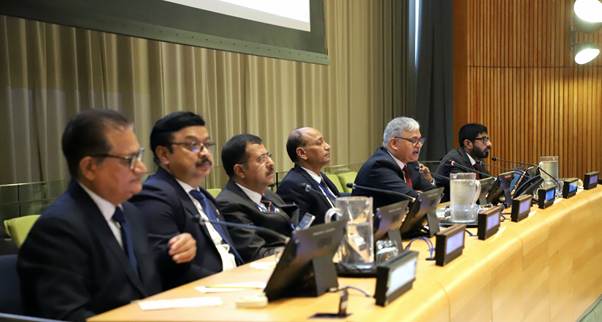
- 13 May 2025
In News:
India actively participated in the 20th session of the United Nations Forum on Forests (UNFF20) held from May 5 to 9, 2025, at the United Nations Headquarters, New York. UNFF, established in 2000 by the UN Economic and Social Council (ECOSOC), is the sole intergovernmental platform dedicated to global forest policy dialogue and coordination, aiming to promote sustainable forest management (SFM) and strengthen political commitment worldwide.
Key Objectives and Functions of UNFF
- Promotes conservation, management, and sustainable development of all forest types.
- Supports the implementation of Agenda 21, Rio Forest Principles, and the UN Strategic Plan for Forests 2017–2030.
- Oversees six voluntary Global Forest Goals (GFGs) and 26 targets, including reversing deforestation and enhancing forest governance.
- Facilitates cooperation through technical exchanges, policy development, financing mechanisms like the Global Forest Financing Facilitation Network, and advocacy linking forests with climate, biodiversity, and sustainable development.
India’s Highlights at UNFF20
India reaffirmed its commitment to the Voluntary National Contributions (VNCs) under the UN Strategic Plan for Forests 2017–2030, reporting progress in increasing its forest and tree cover, which now constitutes 25.17% of the country’s geographical area, as per the latest India State of Forest Report. Major achievements include:
- Restoration efforts under the Aravalli Green Wall project.
- A 7.86% increase in mangrove cover over the past decade.
- Afforestation of over 1.55 lakh hectares through the Green India Mission.
- Plantation of 1.4 billion seedlings under the “Ek Ped MaaKe Naam” (Plant4Mother) campaign.
Global Contributions and Initiatives
India extended an invitation to all UN member states to join the International Big Cat Alliance (IBCA)—a global platform launched by India to conserve seven big cat species through collaborative research, knowledge exchange, and capacity-building.
India also emphasized the importance of incorporating the outcomes of the Country-Led Initiative (CLI) on forest fire management and forest certification—hosted by India in Dehradun in October 2023—into formal global mechanisms. It acknowledged contributions from other countries such as the Republic of Congo, Democratic People’s Republic of Korea, and Austria in this initiative.
Policy and Technical Engagements
India hosted a side event titled “Restoring Degraded Forest Landscapes: India’s Approach to Sustainable Forest Management and Climate Resilience”, showcasing integrated forest restoration strategies combining policy innovation, resource convergence, community participation, and technology.
In a high-level panel on “Valuing Forest Ecosystems in National Policy and Strategy,” India shared pilot study findings from Uttarakhand, Rajasthan, and tiger reserves that quantified ecosystem services like carbon sequestration, water provisioning, and biodiversity conservation. India stressed the need to incorporate ecosystem valuation into national planning to enhance forest governance and ecological sustainability.
Significance of UNFF20
The session focused on advancing three Global Forest Goals:
- Reversing forest cover loss.
- Increasing protected and sustainably managed forests.
- Promoting forest governance and legal frameworks.
UNFF20 aimed to strengthen global dialogue following the 2024 midterm review of the international arrangement on forests and set the agenda for future policy deliberations in 2026. It underscored the critical role forests play in climate resilience, biodiversity, livelihoods, and sustainable development.
Thalassemia Burden in West Bengal higher than National Average
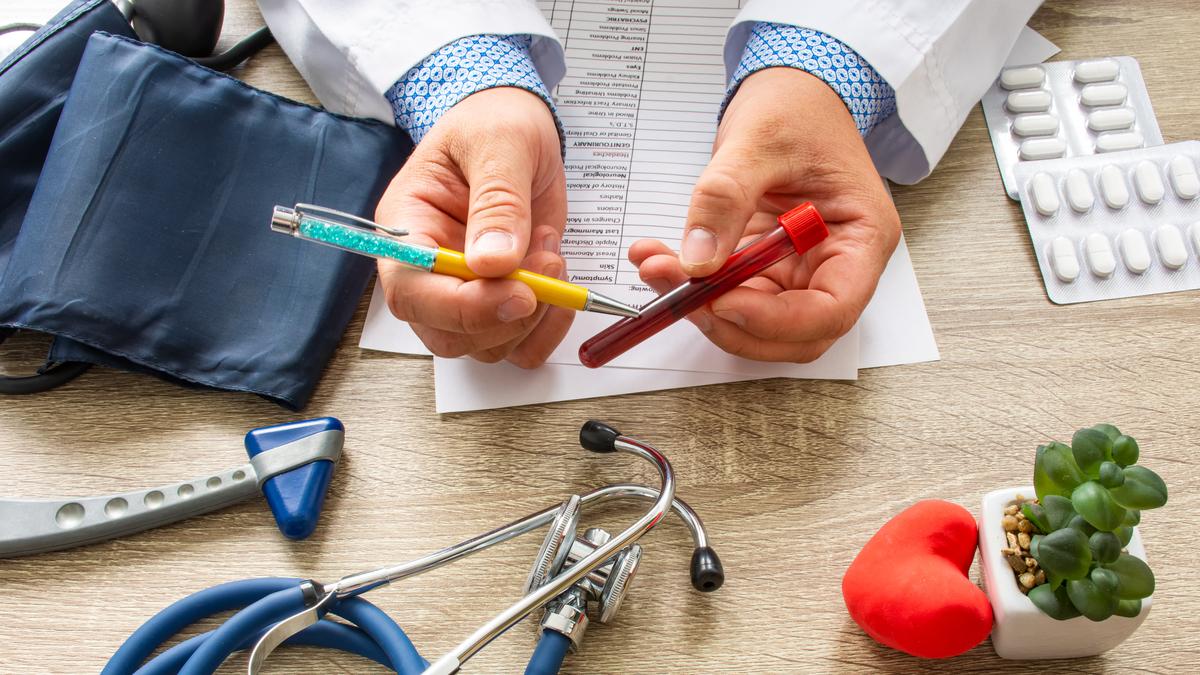
- 12 May 2025
In News:
On World Thalassemia Day, health experts in West Bengal highlighted the state’s significantly higher prevalence of Thalassemia carriers, ranging from 6% to 10%, compared to the national average of 3% to 4% (2011 Census). The elevated rate is mainly attributed to low awareness, intra-community marriages, and inadequate genetic screening.
What is Thalassemia?
- Definition: Thalassemia is a hereditary blood disorder marked by the body’s inability to produce adequate or normal haemoglobin, impairing oxygen transport in the blood.
- Genetic Cause:It arises from mutations or deletions in genes responsible for haemoglobin chains (alpha or beta globin), inherited from both parents.
- Types:
- Alpha Thalassemia: Involves up to four gene deletions; severity varies with number of deletions; common in Southeast Asian, Middle Eastern, and African populations.
- Beta Thalassemia: Caused by mutations in the beta-globin gene; prevalent in Mediterranean, South Asian, and Chinese communities. Includes:
- Thalassemia Minor: Carrier state with mild or no symptoms.
- Thalassemia Major (Cooley’s Anaemia): Severe form requiring lifelong blood transfusions.
- Symptoms:Fatigue, weakness, jaundice, facial deformities, stunted growth, enlarged spleen and liver, and breathlessness.
Thalassemia in India and West Bengal
- India sees about 10,000 to 15,000 babies born annually with Thalassemia Major (National Health Mission, 2016).
- Certain communities like Bengalis, Sindhis, Punjabis, and Gujaratis have higher carrier frequencies.
- West Bengal reports over 18,000 transfusion-dependent Thalassemia patients with a patient positivity rate of 2.5%.
Challenges in West Bengal
- Low Awareness: Many remain uninformed about genetic transmission and implications.
- Intra-community Marriages: Increase risk of two carriers marrying, leading to affected children.
- Insufficient Screening: Inadequate prenatal and adolescent screening limits early detection and prevention.
- No Legal Framework: India lacks laws to prevent marriages between carriers; awareness is the key preventive strategy.
Government Efforts and Recommendations
- West Bengal has established 36 Thalassemia Control Units (TCUs) across districts focusing on screening pregnant women (especially in the first trimester) and adolescents to reduce future disease incidence.
- Experts emphasize early parental screening, informed counseling, and timely medical care.
- Supportive care includes regular blood transfusions, iron chelation therapy, vaccinations, nutritional balance (low iron diet), infection prevention, and mental health counseling.
Expanded Credit Guarantee Scheme for Startups (CGSS)
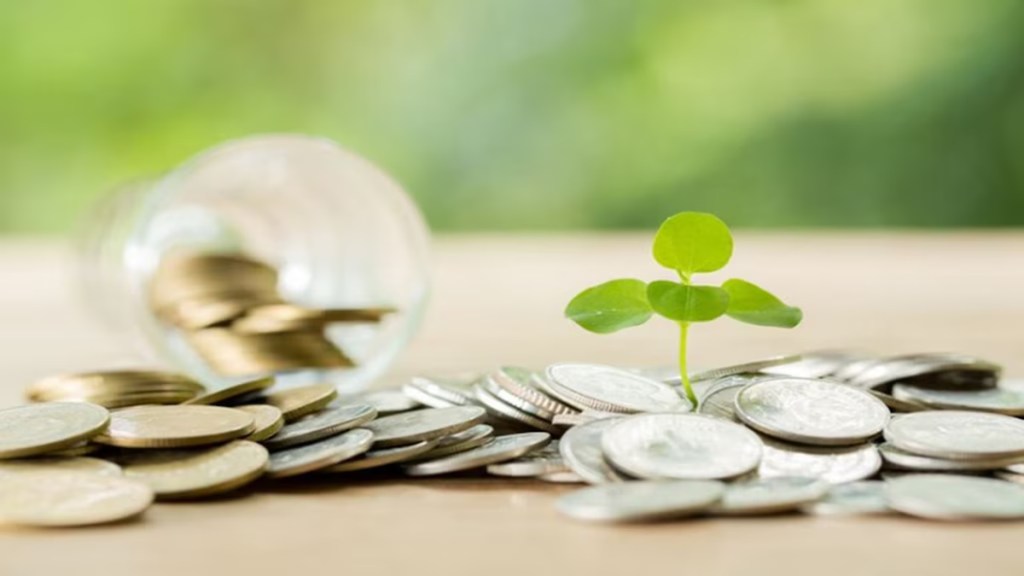
- 12 May 2025
In News:
In a significant push to support innovation, domestic manufacturing, and startup growth, the Government of India has doubled the credit guarantee limit under the Credit Guarantee Scheme for Startups (CGSS) from ?10 crore to ?20 crore per borrower. Additionally, it has enhanced the guarantee coverage and reduced the guarantee fees for selected high-priority sectors.
About CGSS (Credit Guarantee Scheme for Startups)
- Launched: October 2022
- Under: Startup India Action Plan (initiated January 16, 2016)
- Nodal Ministry: Department for Promotion of Industry and Internal Trade (DPIIT), Ministry of Commerce and Industry
- Implemented by: National Credit Guarantee Trustee Company (NCGTC)
- Objective
- To enable collateral-free debt funding to DPIIT-recognised startups via:
-
- Term loans
- Working capital
- Venture debt and other fund-based/non-fund-based credit instruments
- To reduce the perceived credit risk for financial institutions and promote early-stage innovation, R&D, and self-reliant manufacturing.
Key Features of the Expanded CGSS
Parameter Previous Provision Revised Provision
Credit Guarantee Limit ?10 crore ?20 crore per borrower
Guarantee Coverage 75% 85% for loans ≤ ?10 crore, 75% for loans >
?10 crore
Annual Guarantee Fee (AGF) 2% 1% for startups in 27 Champion Sectors
Eligible Instruments Fund-based & non-fund based Includes venture debt, debentures,
subordinated debt
Guarantee Issuance Manual process Automated via NCGTC portal
Umbrella Guarantee Not earlier specified Covers pooled investments
(up to ?20 crore or 5% loss)
Eligible Startups & Lenders
Startups must be:
- Recognised by DPIIT
- Not classified as Non-Performing Assets (NPA)
- Certified eligible by the lending institution
Lending Institutions include:
- Scheduled Commercial Banks
- NBFCs (rated BBB+ and above, net worth ≥ ?100 crore)
- SEBI-registered Alternative Investment Funds (AIFs)
Focus on Champion Sectors
To strengthen the Make in India initiative, the reduced AGF of 1% applies to 27 Champion Sectors, which include:
- 15 Manufacturing Sectors:Aerospace &defence, automotive components, biotechnology, chemicals, petrochemicals, electronics, pharmaceuticals, etc.
- 12 Services Sectors:IT &ITeS, tourism, hospitality, medical value travel, accounting and finance, audio-visual services, among others.
Expected Outcomes
- Improved Credit Access: More financial institutions are expected to extend funding to startups due to increased guarantee coverage and reduced risk.
- Encouragement for Innovation: Easier credit access will facilitate R&D, product development, and new-age technological innovation.
- Boost to Self-Reliance: Priority manufacturing and service sectors will benefit from reduced funding costs, promoting Atmanirbhar Bharat.
- Alignment with Viksit Bharat Vision: Supports long-term goals of inclusive economic growth through entrepreneurship and job creation.
Discovery of Chirality in KV?Sb?
- 12 May 2025
In News:
In a major advancement in condensed matter physics, researchers have identified a chiral quantum state in KV?Sb?, a topological material with a Kagome lattice structure. This discovery is significant as the material was earlier thought to be non-chiral, making this the first observation of intrinsic chirality in a bulk topological quantum system.
What is Chirality?
- Chirality refers to the geometric property of an object not being superimposable on its mirror image—a concept known as "handedness".
- It is common in nature, observed in:
- Amino acids
- The double helical structure of DNA
- Spiral patterns in biological systems
- Molecules often exist in left-handed (L) and right-handed (D) forms, a feature crucial to both biochemistry and quantum physics.
About KV?Sb? and the Kagome Lattice
- KV?Sb? is a bulk quantum material characterized by a Kagome lattice—a structure formed by corner-sharing triangles.
- The Kagome pattern, originating from Japanese basket-weaving, serves as a fertile platform for investigating topological and quantum phenomena like superconductivity, charge ordering, and now, chirality.
Scientific Technique Used
- Researchers employed a novel tool called the Scanning Photocurrent Microscope (SPCM).
- Unlike Scanning Tunnelling Microscopy (STM), which offers atomic-resolution images, SPCM is designed to detect nonlinear electromagnetic responses in materials.
- The SPCM detected handedness in the photocurrent, confirming the circular photogalvanic effect (CPGE)—a definitive marker of chirality.
Key Findings
- The material exhibited spontaneous symmetry breaking, particularly the formation of a charge density wave (CDW).
- At 4 Kelvin, KV?Sb? responded differently to right- and left-handed circularly polarized light, demonstrating the breaking of mirror and inversion symmetries.
- This confirms the presence of intrinsic chiral charge order, marking the first such observation in a bulk topological material.
23rd South Asia Press Freedom Report (2024–25)
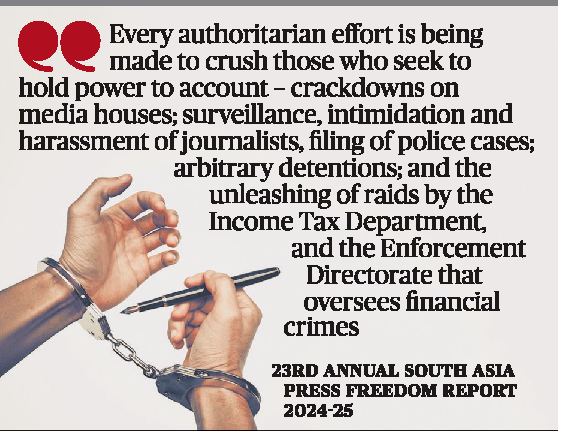
- 12 May 2025
In News:
The 23rd Annual South Asia Press Freedom Report 2024–25, titled “Frontline Democracy: Media and Political Churn”, flags a concerning decline in media freedom across South Asia, including India. Published by the Asia Press Freedom group, the report assesses press conditions in eight countries: India, Pakistan, Afghanistan, Sri Lanka, Bangladesh, Nepal, Bhutan, and the Maldives.
Key Findings
- Over 250 violations of media rights recorded.
- 69 journalists were jailed or detained; 20 killed in the line of duty.
- India ranked 151st globally in press freedom; Bhutan dropped to 152nd—its lowest ever.
- Pakistan witnessed its most violent year for journalists in two decades, with eight killed.
India-Specific Observations
Legal and Institutional Suppression
- Increasing use of stringent laws like UAPA, PMLA, defamation, and sedition against journalists.
- Media organizations critical of the government have faced IT raids, ED investigations, and denial of government advertising.
- These actions have led to widespread self-censorship and a chilling effect on critical reporting.
Disinformation and Political Interference
- Political IT Cells play a key role in spreading fake news and hate speech, deepening the trust deficit in mainstream media.
- The Global Risks Report 2024 identifies “manipulated information” as the world’s most serious short-term threat.
Digital & Economic Challenges
- AI-generated content undermines journalistic credibility and originality.
- Media workforce faces challenges from:
- Declining advertisement revenue
- Contractualisation under new labour codes
- Mergers and corporate restructuring
- Precarity of gig and freelance journalists
Gender Inequality
- Poor representation of women in newsroom leadership roles.
- Pervasive gender-based harassment remains unaddressed.
Impacts of Eroding Media Freedom
- Democratic Deficit: Weakens the role of the press as the fourth pillar of democracy.
- Public Mistrust: Rising perception of media bias and loss of credibility.
- Reduced Information Access: Laws like the DPDP Act 2023 and changes to RTI provisions hinder public transparency.
Balochistan
- 12 May 2025
In News:
On May 9, 2025, Mir Yar Baloch announced the unilateral declaration of independence for Balochistan from Pakistan. In a public appeal, he urged India to formally recognize Balochistan as a sovereign state and open an embassy in New Delhi. He also called upon the United Nations to deploy peacekeeping forces and demanded the withdrawal of the Pakistani military from the region.
Geographical Profile
- Location: Balochistan lies in the southwestern part of Pakistan and is the country’s largest province by area, comprising nearly 44% of its total territory.
- Area: Approximately 347,190 square kilometers
- Capital: Quetta, situated near the Afghanistan border
- Borders:
- East: Sindh and Punjab provinces
- West: Iran
- Northwest: Afghanistan (across the Durand Line)
- South: Arabian Sea, with a coastline of around 770 km
Topography and Climate
- Characterized by rugged, mountainous terrain (notably the Sulaiman and Makran ranges)
- Arid and semi-arid climate zones, including desert and dry steppe regions
- Low population density, yet abundant in untapped mineral wealth
Demographics and Ethnicity
- Major Ethnic Group: The Baloch, who trace their ancestry to Iranian origins
- Other Communities: Pashtuns in the northern areas, and the Brahui ethnic group
- Languages Spoken: Balochi, Pashto, Brahui, and Urdu
- Religion: Predominantly followers of Sunni Islam
Strategic and Geopolitical Significance
Natural Resource Wealth
- Balochistan is rich in natural gas, coal, copper, and gold.
- The RekoDiq mining site is among the world’s largest undeveloped gold and copper reserves.
- The province contributes about 40% of Pakistan’s natural gas production, yet remains economically underdeveloped and politically marginalized.
China-Pakistan Economic Corridor (CPEC)
- Gwadar Port, located in southern Balochistan, is a critical node in China’s Belt and Road Initiative (BRI).
- It provides China with direct maritime access to the Arabian Sea and strategic connectivity to West Asia, bypassing the Strait of Malacca.
India’s Strategic Perspective
- India has consistently highlighted human rights violations in Balochistan at international forums.
- The region’s geostrategic position intersects with India’s Indo-Pacific vision, and is relevant in India’s efforts to counter China’s growing footprint through CPEC.
Insurgency and Security Dynamics
- Balochistan has long witnessed separatist movements led by Baloch nationalist groups seeking either enhanced autonomy or full independence from Pakistan.
- These groups frequently target Pakistani military convoys, CPEC infrastructure projects, and Chinese nationals working in the region, signaling strong opposition to external control and resource exploitation.
SCALP Missile
- 11 May 2025
In News:
During Operation Sindoor, the Indian Air Force reportedly employed SCALP missiles launched from Rafale fighter jets to target high-value terror infrastructure in Pakistan and Pakistan-occupied Kashmir (PoK).
What is the SCALP Missile?
- The SCALP (Système de CroisièreAutonome à Longue Portée) is a long-range, air-launched cruise missile designed for deep-strike missions.
- It is also known by its British designation, Storm Shadow.
- Developed jointly by France and the United Kingdom, it is built for precision attacks on strategic, fixed, and fortified targets.
- Global Operators: The missile is in operational use by the air forces of:India, France, United Kingdom, Egypt, Italy, Greece, Saudi Arabia, Qatar, and UAE.
- Indian Integration: The Indian Air Force has integrated the SCALP missile with its Rafale fleet, enhancing India's capacity to conduct long-range precision strikes with minimal collateral damage.
Key Features:
Feature Description
Range Approximately 500 km
Warhead 450 kg high-explosive, designed to penetrate hardened structures
Weight Around 1,300 kg
Dimensions Length: ~5 metres; Wingspan: ~3 metres
Speed Subsonic (around Mach 0.8)
Guidance Systems Combined GPS/INS navigation, terrain-following radar, and
infrared homing for terminal precision
Stealth Capability Optimized for low-altitude flight to evade radar detection
Accuracy Uses image-based terminal guidance to match
preloaded target images
All-weather Capability Can operate under diverse weather conditions
Kosmos 482
- 11 May 2025
In News:
A 500-kg fragment of the Soviet-era Kosmos 482 spacecraft, launched in 1972 as part of the Venera programme, is expected to make an uncontrolled re-entry into Earth’s atmosphere around May 10, 2025, after over 53 years in orbit.
What was the Kosmos 482 Mission?
- Launched: March 31, 1972, by the Soviet Union.
- Objective: To land a probe on Venus and collect atmospheric and surface data.
- Programme: Part of the Venera series (1961–1984), which launched 28 probes to Venus.
- 13 entered the Venusian atmosphere.
- 10 successfully landed on the surface.
- Twin Mission:Venera 8, launched on March 27, 1972, successfully landed on Venus and transmitted data for 50 minutes.
Mission Failure and Orbit Status
- The mission failed due to a timer malfunction in the rocket's upper stage, which shut down prematurely, leaving the spacecraft stranded in low Earth orbit instead of heading to Venus.
- The main spacecraft eventually burned up in the atmosphere, but a lander module (approx. 500 kg) remained in orbit.
Expected Re-entry (May 2025)
- The lander module is currently being dragged down by atmospheric friction.
- No precise location or time of impact is known due to the uncontrolled nature of its descent.
- Expected re-entry corridor lies between 52° North and 52° South latitude, covering:
- Africa, Australia
- Most of the Americas
- Much of southern and mid-latitude Europe and Asia
Is it a risk to Earth?
- The lander is made of titanium, with a melting point of ~1,700°C, higher than typical atmospheric re-entry temperatures (~1,600°C).
- This increases the likelihood of survival through re-entry.
- Possible outcomes as per space debris experts:
- “A splash” (ocean impact) — least dangerous
- “A thud” — impact on uninhabited land
- “An ouch” — impact on populated area (least desired scenario)
- If intact, the object could impact Earth at a speed of ~242 km/h, similar to a high-speed train.
HAROP Drone

- 11 May 2025
In News:
On May 8, 2025, as part of Operation Sindoor, India reportedly used Israeli-made HAROP loitering munitions to destroy a Pakistani air defence system in Lahore, in response to Pakistan’s attempted attacks on Indian military installations.
What is HAROP?
- HAROP is an advanced loitering munition, also known as a suicide drone or kamikaze drone.
- Developed by Israel Aerospace Industries (IAI), it combines features of a UAV and a missile.
- It is designed to loiter over an area, search for high-value targets, and crash into the target with an explosive payload.
Key Characteristics and Capabilities
Feature Description
Function Combines surveillance and attack roles; can loiter, identify, and
strike autonomously or manually
Targets Designed to hit air defence systems, radars, command posts,
tanks, and moving military assets
Sensor Equipped with an Electro-Optical (EO) sensor for real-time
target tracking and acquisition
Endurance Up to 9 hours of loitering capability for deep-target missions
Launch Platforms Can be launched from truck-mounted canisters,
naval vessels, or ground stations
Navigation Resistance GNSS (GPS)-jam resistant, effective in communication-
denied environments
Strike Profile Executes attacks from various angles using
steep or shallow dive maneuvers
Evolution and Operational Use
- HAROP is an evolution of the earlier HARPY system, which was radio-frequency (RF) guided.
- Unlike the HARPY, HAROP uses EO sensors for improved visual target identification.
- HAROPs are "fire-and-forget" weapons, meaning they do not require active control after launch.
- The system has been described by IAI as the “King of the Battlefield”, with a claimed mission success rate of 98%.
- Proven effective in multiple combat scenarios, including suppression of enemy air defences (SEAD).
Carbon Border Adjustment Mechanism (CBAM)
- 11 May 2025
In News:
India has warned it will retaliate if the United Kingdom implements its proposed Carbon Border Adjustment Mechanism (CBAM) from January 1, 2027, calling it a violation of the Common But Differentiated Responsibilities (CBDR) principle of international climate agreements.
What is Carbon Border Adjustment Mechanism (CBAM)?
- It is a carbon tax on imports based on their carbon intensity of production.
- Aim: Prevent carbon leakage by aligning the cost of carbon between domestic and foreign producers.
- Sectors likely to be initially targeted include steel, cement, aluminium, and energy-intensive products.
- The UK is expected to implement its version of CBAM in 2027, following a similar approach by the European Union.
India’s Concerns
- Violation of CBDR Principle
- CBAM undermines the UNFCCC and Paris Agreement, which recognize that developing countries require flexibility and support for decarbonization.
- India’s per capita emissions are low, but its carbon intensity is higher due to developmental needs.
- Unfair Trade Practice
- CBAM could nullify tariff concessions negotiated under the India–UK Free Trade Agreement (FTA).
- Finance Minister Nirmala Sitharaman and Commerce Minister Piyush Goyal have labelled CBAM “unfair” and discriminatory.
- Double Taxation and Export Losses
- Indian exporters may face double taxation—domestic environmental levies and UK’s border tax.
- India proposed a ‘rebalancing mechanism’ and MSME carve-out, both of which the UK declined.
- Export-heavy sectors like textiles, leather, ceramics, engineering goods, and steel may be hit hard due to sustainability compliance burdens.
- MSME Vulnerability
- Labour-intensive MSMEs lack the capacity to meet expensive ESG norms and carbon tracking requirements.
- India's request for exemption or compensation for MSMEs was not accepted.
India’s Response Strategy
- India reserves the right to retaliate if CBAM is imposed.
- Potential responses include:
- Domestic carbon taxation to offset UK’s CBAM and use revenue for green transition.
- Invoking a rebalancing clause under the FTA’s “general exceptions” (similar to GATT), allowing trade countermeasures for environmental or public interest.
Strategic Implications for India
- Non-tariff barriers like CBAM can undermine market access gained through FTAs.
- India must stay alert to evolving trade conditions involving environment, labour, IPR, and gender standards, which often require policy adjustments.
- Calls for India to strengthen its carbon tracking, ESG frameworks, and climate-compliant production systems to remain globally competitive.
Saola Genome Mapping
- 11 May 2025
In News:
An international team of scientists has successfully mapped the genome of the saola (Pseudoryxnghetinhensis), the world’s rarest large land mammal, providing critical insights for conservation through genetic rescue and captive breeding.
About Saola
- Common Name: Asian Unicorn
- Scientific Name: Pseudoryxnghetinhensis
- First Described: 1993 (based on a skull found in Vietnam in 1992)
- Classification: Bovine species, closely related to cattle but resembling an antelope
- Habitat: Endemic to the Annamite Mountains along the Laos–Vietnam border; prefers humid evergreen forests
- IUCN Status: Critically Endangered
- Estimated Population (2015): 50–300 individuals
- Physical Traits:
- Height: ~33 inches at shoulder
- Both sexes possess straight, parallel horns (~20 inches)
- Distinct white facial markings and muzzle scent glands
Major Threats
- Habitat loss, primarily due to agricultural expansion and forest degradation
- Poaching and indiscriminate snaring, including by-catch in traps set for other animals
- Lack of successful captive care: Over 20 captured saolas died in the 1990s due to inadequate professional care
Genome Mapping and Key Findings
- Sample Base: Genomes of 26 individuals sequenced using remains sourced from hunter households
- Population Divergence: Two genetically distinct populations emerged 5,000–20,000 years ago, likely due to:
- Forest fragmentation during/after the Last Glacial Maximum
- Expansion of human activities such as agriculture, burning, and hunting around 4,000 years ago
- Genetic Complementarity: Each population retains different genetic variants, offering potential for enhanced genetic diversity if combined
- Scientific Importance:
- Confirms historical population isolation and genetic loss
- Provides a genetic foundation for targeted conservation efforts
Conservation Implications
- Captive Breeding Program: Plans underway in Vietnam to establish a well-equipped breeding center
- Goal: Capture at least a dozen individuals from both genetic lineages to create a genetically resilient population
- Long-term Vision: Reintroduction into protected forest areas with strict anti-poaching measures
Mission Sankalp
- 10 May 2025
In News:
Mission Sankalp is a large-scale counter-insurgency operation launched jointly by security forces of Chhattisgarh Police, Telangana Police, CRPF, and the elite CoBRA unit. The operation targets the dense forested Karregutta hills along the Chhattisgarh–Telangana border, focusing on dismantling Maoist strongholds and disrupting their operational capabilities.
Key Objectives and Area of Operation
- Primary Aim: Neutralize senior Maoist leaders, especially targeting Battalion 1 of the People’s Liberation Guerrilla Army (PLGA), the armed wing of the CPI-Maoist.
- Geographical Focus: Forested, hilly terrain covering parts of Bijapur district (Chhattisgarh) and Mulugu district (Telangana).
- Goals: Destroy Maoist hideouts, bunkers, arms caches, and logistics networks to cripple the insurgency infrastructure.
Forces Involved and Operational Scale
- Personnel: Over 28,000 personnel including District Reserve Guard (DRG), Bastar Fighters, Special Task Force (STF), CRPF, CoBRA, and support from the Indian Air Force.
- Tactics: Precision strikes guided by aerial surveillance and intelligence inputs in challenging forest terrain.
- Scope: The operation spans approximately 800 square kilometres across the inter-state border area.
Achievements and Impact
- Casualties and Encounters: Since its launch on April 21, around 35 encounters have taken place. At least 26 Maoists, including several senior cadres and three women cadres with bounties of ?8 lakh each, have been killed. Approximately 168 Maoists have been eliminated across Chhattisgarh in 2025, with 151 in the Bastar region.
- Seizures: Security forces have recovered over 2 tonnes of explosives, 400+ improvised explosive devices (IEDs), around 40 firearms, and more than 6 tonnes of ration, medicines, and daily essentials. Hundreds of Maoist hideouts and bunkers have been destroyed.
- Casualties Among Security Forces: Six personnel, including a CoBRA officer, were injured in IED blasts but are now stable.
- Strategic Outcome: The operation has dealt a severe blow to the Maoist command structure, disrupted logistics, and restored state authority in previously inaccessible tribal areas.
Strategic Importance
- Inter-State Cooperation: Mission Sankalp marks one of the largest coordinated anti-Naxal operations in recent years, reflecting enhanced synergy between central and state security forces.
- National Security: It aligns with the Centre’s zero-tolerance policy towards Left Wing Extremism, aiming to weaken the Maoists’ influence and support the restoration of governance and development in affected tribal regions.
- Long-Term Goals: By neutralizing the insurgency's core military units, the operation seeks to create conditions for improved infrastructure, welfare delivery, and civilian confidence in law enforcement.
New Framework for Regulation Formulation and Public Consultation

- 10 May 2025
In News:
The Reserve Bank of India (RBI) has introduced a structured framework designed to standardize the creation and revision of its regulatory policies. This initiative aims to enhance transparency, consistency, and public engagement throughout the regulatory process.
Key Aspects of the Framework
- Unified Application:The framework covers all forms of RBI regulations, including directions, guidelines, notifications, policies, and standards.
- Mandatory Public Consultation:Draft regulations are required to be published on the RBI’s official website along with a detailed Statement of Particulars. These drafts will remain open for public comments for a minimum period of 21 days, allowing stakeholders to provide their inputs.
- Impact Evaluation:Each draft must clearly outline its objectives, conduct an impact assessment, and reference relevant international best practices and global standards to ensure comprehensive evaluation.
- Response to Feedback:After considering public comments, the RBI will release a summary addressing the feedback alongside the final version of the regulations.
- Regular Review:Existing regulations will undergo periodic reassessment based on supervisory insights, alignment with global developments, and their continued applicability in a dynamic environment.
Significance of the Framework
- Enhances Transparency and Inclusiveness:By inviting public participation, the framework ensures a more open and accountable regulatory process.
- Encourages Evidence-Based Policy:The incorporation of impact analysis and stakeholder feedback supports more informed and effective policymaking.
- Aligns with Global Standards:The framework positions India’s regulatory governance in harmony with international best practices.
- Boosts Regulatory Efficiency:Continuous review and rationalization help in eliminating redundant regulations and improving overall governance.
International Maritime Defence Exhibition (IMDEX) Asia 2025
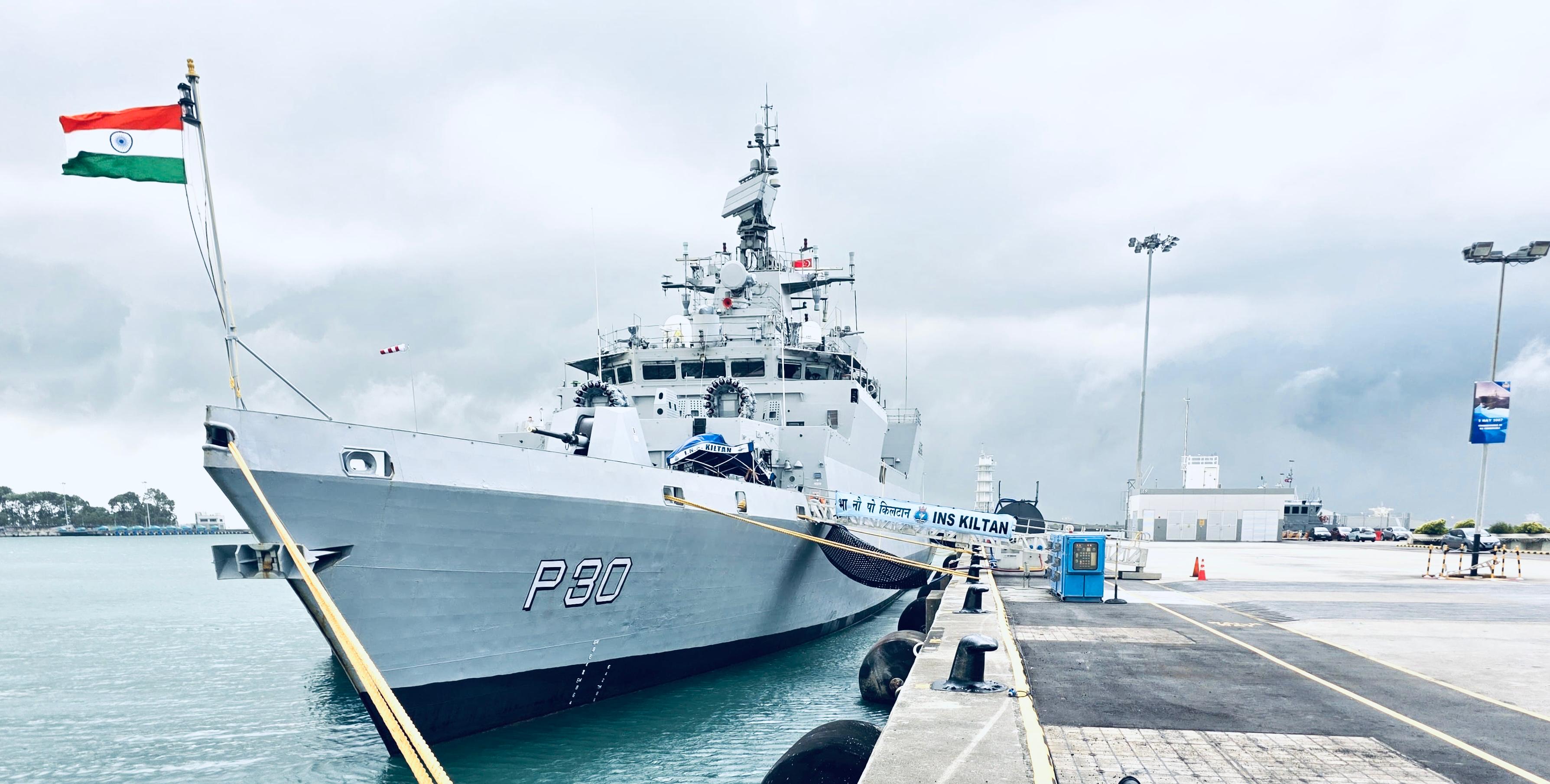
- 10 May 2025
In News:
The International Maritime Defence Exhibition (IMDEX) Asia is a leading biennial maritime and defence event in the Asia-Pacific region, held since 1997 in Singapore at the Changi Exhibition Centre. It serves as a key global platform for navies, coast guards, and maritime defence industries to showcase advanced naval platforms, cutting-edge technologies, and engage in strategic dialogue.
Indian Navy’s Participation
- In May 2025, the Indian Naval Ship INS Kiltan arrived in Singapore to participate in IMDEX Asia 2025.
- This deployment forms part of the Indian Navy’s operational commitments and highlights the strong maritime partnership between India and Singapore.
- During the exhibition, the Indian Navy crew engaged in multiple bilateral and multilateral activities, including professional exchanges with the Republic of Singapore Navy (RSN) and other participating navies.
- Activities included guided tours for schoolchildren, cross-deck visits with other navies, and curated visits for defence industry representatives to promote awareness of maritime security and India’s naval heritage.
Key Features of IMDEX Asia
- Platform for Defence Collaboration: IMDEX Asia facilitates showcasing of naval systems and debut of advanced maritime technologies.
- Strategic Dialogue: The event hosts high-level policy discussions and strategic dialogues on maritime security.
- International Maritime Security Conference (IMSC):
- Established in 2009, IMSC is a crucial component of IMDEX.
- Jointly organised by the Republic of Singapore Navy and the S. Rajaratnam School of International Studies (RSIS).
- It convenes navy chiefs, coast guard leaders, policymakers, and strategic analysts.
- The conference aims to enhance mutual maritime security, improve maritime domain awareness, and foster cooperative responses to challenges in the global maritime commons.
Significance
- The Indian Navy’s participation in IMDEX Asia underlines its commitment to regional maritime security and stability.
- It also reinforces the longstanding friendly ties between India and Singapore and highlights the importance of naval interoperability and defence cooperation in the Indo-Pacific region.
Persian Gulf vs Arabian Gulf
- 10 May 2025
In News:
The United States, under then-President Donald Trump, proposed a shift in terminology by referring to the Persian Gulf as the “Arabian Gulf” during a state visit to Saudi Arabia, aligning with the preferences of some Arab Gulf countries.
Historical and Geopolitical Background
- The name “Persian Gulf” has been historically documented since the 16th century, appearing in treaties, maps, and international references.
- Arab countries such as Saudi Arabia, UAE, and Bahrain use the term “Arabian Gulf” in national documents and cartography.
- The proposal by Trump faced criticism from Iran, which regards the renaming as a politically motivated act aimed at undermining its historical and cultural identity.
Iran’s Response
- Iran’s leadership, including Foreign Minister Abbas Araghchi, has condemned any attempt to alter the name, calling it a hostile and invalid act with no legal or geographical legitimacy.
- In 2012, Iran had threatened to sue Google for omitting the name "Persian Gulf" from its maps.
International Standards
- The International Hydrographic Organisation (IHO), responsible for standardizing maritime names, continues to officially recognise the name “Persian Gulf.”
- While countries can adopt different terms domestically, they cannot enforce global changes unilaterally.
Geographical Features of the Persian Gulf
- Type: Marginal sea of the Indian Ocean, located in Western Asia.
- Size: ~251,000 km²
- Depth: Average ~50 m; Maximum ~90 m
- Coastline: ~5,117 km; Iran has the longest stretch (~1,536 km)
- Borders:
- North: Iran
- Southwest: Saudi Arabia, UAE, Qatar
- Northwest: Iraq, Kuwait, Bahrain
- Islands:
- Qeshm Island (Iran): Largest in the Gulf (~1,491 km²)
- Bahrain: Sovereign island nation with over 50 islands and a key US naval base
Strategic and Economic Significance
- The Strait of Hormuz, linking the Persian Gulf to the Arabian Sea, is a critical chokepoint for global energy, with ~30% of global oil exports passing through.
- The region is a theatre of military presence, with navies of the US, Iran, and Gulf countries asserting control and influence.
- Strategic islands like Qeshm and Bahrain hold economic and military importance.
Operation Sindoor
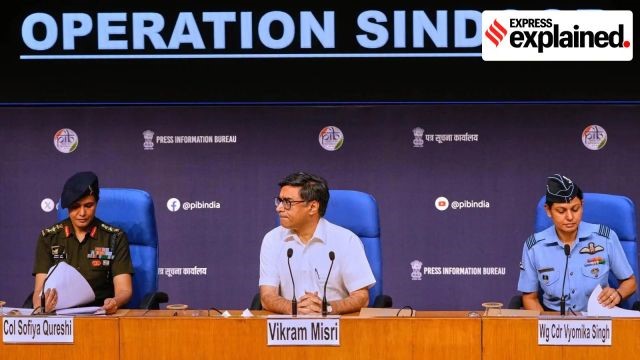
- 10 May 2025
In News:
On May 7, 2025, the Indian Armed Forces launched Operation Sindoor, a coordinated precision strike on terrorist camps located in Pakistan and Pakistan-occupied Kashmir (PoK). The operation was a response to the killing of civilians in Pahalgam by Pakistan-backed terrorists.
Key Facts:
- 21 terror camps across 9 locations were targeted.
- Advanced niche-technology weapons were employed to ensure minimal collateral damage.
- The operation highlights India's evolving capability in long-range, precision-guided weaponry.
Major Precision-Guided Weapons in India’s Arsenal
1. HAMMER (Highly Agile and Manoeuvrable Munition Extended Range)
- Origin: France (by Safran)
- Platform: Integrated with Rafale fighter jets
- Range: Up to 70 km
- Features:
- All-weather precision
- Autonomous guidance
- Jamming-resistant
- Operable at low altitude over rough terrains
- Role in Operation: Likely used for air-to-ground strikes on tactical targets.
2. SCALP (Storm Shadow in UK)
- Type: Air-launched stealth cruise missile
- Origin: Europe (by MBDA)
- Range: Up to 450 km
- Navigation: Uses INS, GPS, and terrain referencing
- Capabilities:
- Bunker-penetration
- Low radar signature
- All-weather and night operable
- Relevance: Designed for deep precision strikes, ideal for hardened terrorist infrastructure.
3. METEOR
- Type: Beyond Visual Range Air-to-Air Missile (BVRAAM)
- Origin: MBDA (Europe)
- Propulsion: Solid-fuel ramjet for sustained high-speed interception
- Special Feature: Large No-Escape Zone, effective in electronic warfare conditions
- Use Case: Enhances air superiority and can neutralize enemy aircraft before visual contact.
4. BRAHMOS Supersonic Cruise Missile
- Developed by: DRDO (India) and NPOM (Russia) under BrahMos Aerospace
- Speed: Mach 2.8–3.0
- Range: Initially 290 km, now extended to 450–500 km after India’s MTCR entry
- Warhead: 200–300 kg
- Platforms: Compatible with land, sea, and air platforms
- Features:
- Fire-and-Forget
- Precision strike at low terminal altitude (~10 m)
- Strategic Role: Provides rapid, stealthy, and accurate strikes across the services.
5. Loitering Munitions ("Kamikaze Drones")
- Function: Combines surveillance and strike capabilities
- Features:
- Can loiter over target zones
- Autonomous or semi-autonomous targeting
- High precision against time-sensitive or mobile targets
- Adoption: Increasing induction across the Army, Navy, and Air Force
India–U.S. Energy Cooperation
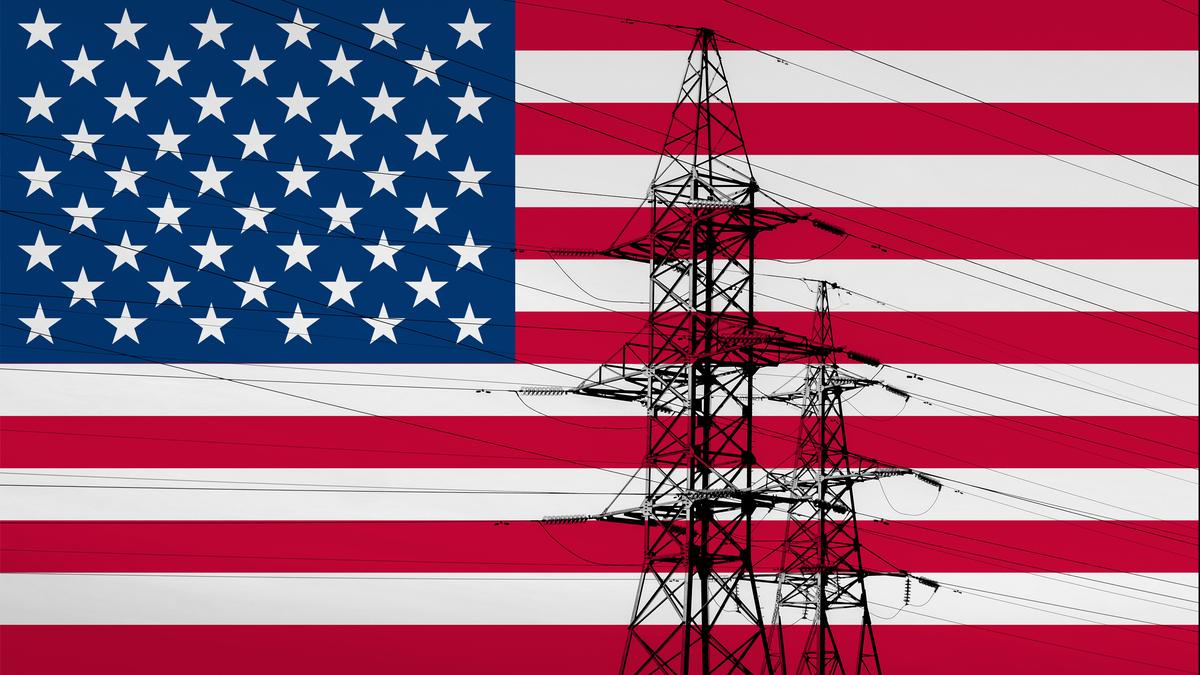
- 09 May 2025
In News:
U.S. Vice-President J.D. Vance recently reaffirmed strong bilateral engagement with India in the domains of energy and defence. In parallel, India underscored the need to prioritiseenergy security, technology transfer, and collaboration on critical minerals as pillars of this strategic partnership.
Major India–U.S. Energy Initiatives
- Strategic Clean Energy Partnership (SCEP):Facilitates cooperation across bioenergy, solar power, hydrogen fuels, and energy efficiency measures.
- Initiative on Critical and Emerging Technology (iCET):Focused on advanced technologies such as clean energy, Artificial Intelligence (AI), quantum computing, and Small Modular Reactors (SMRs).
- Civil Nuclear Cooperation:Aims to enhance technology exchange and investments aligned with India’s goal of achieving 100 GW of nuclear capacity by 2047.
- Critical Minerals MoU (2024):Establishes a framework for resilient and transparent supply chains for rare earth elements and critical minerals, along with potential third-country investment opportunities.
Rationale for Strengthening the Energy Partnership
- Energy Security:India’s transition to a $5 trillion economy requires uninterrupted, affordable energy access.
?Example: India's energy import bill reached $153 billion in FY 2023–24, highlighting the need for long-term partnerships. - Climate Commitments:To achieve net-zero emissions by 2070, India must scale up investments in low-carbon technologies, including nuclear, renewables, and green hydrogen.
- Mineral Supply Chain Diversification:With China dominating over 90% of rare earth processing, India seeks reliable and democratic supply partnerships to support its clean energy transition.
- Infrastructure and Financing Needs:Developing nuclear energy infrastructure alone could demand over $180 billion by 2047, requiring foreign capital, joint ventures, and technology collaboration.
Proposed Roadmap for Enhancing Bilateral Energy Ties
- Legal Reform:Revisit the Civil Liability Act to facilitate private sector participation in India's nuclear sector.
?Example: Proposed transfer of SMR technology from Holtec to Indian companies (e.g., L&T, Tata Consulting) requires legal assurances. - Strategic Mineral Reserves Collaboration:Joint stockpiling via India’s Strategic Petroleum Reserves and the U.S. National Defense Stockpile can buffer supply shocks.
- India–U.S. Mineral Exchange Platform:Launch a digital trade and traceability platform using blockchain technology to enhance transparency and co-investment.
- Leverage the Quad Partnership:Deepen trilateral mineral partnerships with Australia and Japan, focusing on processing facilities, R&D hubs, and outreach to resource-rich African nations.
- Accelerate Nuclear Rollout:Standardise nuclear reactor designs, streamline regulatory approvals, and aim to install 5–6 GW of new nuclear capacity annually by the early 2030s.
- Green Financing Mechanisms:Develop innovative funding frameworks such as green bonds, blended finance, and leverage multilateral funding for clean energy and mineral projects.
IMO’s Draft Net-Zero Framework for Shipping
- 09 May 2025
In News:
The International Maritime Organization (IMO) has approved a draft Net-Zero Framework aimed at achieving net-zero greenhouse gas (GHG) emissions from global shipping by around 2050. This is a major milestone in aligning the maritime sector with global climate goals.
Overview of the Draft Net-Zero Framework
What is it?
The framework proposes a legally binding global mechanism to reduce GHG emissions in the maritime industry. It is the first international effort to combine sector-wide emissions caps with a carbon pricing model, setting a precedent for other global industries.
Key Features
- Legal Foundation: Introduced under Chapter 5 of MARPOL Annex VI, focusing on the prevention of air pollution from ships.
- Global Fuel Standard (GFI): Requires ships to reduce GHG intensity of fuel on a “well-to-wake” basis (i.e., accounting for emissions from fuel production to usage).
- Carbon Pricing Mechanism:
- Ships that exceed GFI thresholds must purchase remedial credits.
- Ships using low-GHG fuels can earn and trade surplus credits.
- IMO Net-Zero Fund:
- Redistributes carbon revenues to support:
- Zero-emission vessels
- R&D and capacity building
- Climate resilience initiatives in Small Island Developing States (SIDS) and Least Developed Countries (LDCs).
- Redistributes carbon revenues to support:
- Scope: Applies to ships over 5,000 gross tonnage (GT), covering approximately 85% of global maritime CO? emissions.
- Compliance Tools:
- Credit trading among ships.
- Purchase of credits through the IMO fund.
- Credit banking for future compliance.
Significance of the Framework
- First Global Regulation of Its Kind: Introduces a unified emissions and pricing system for international shipping, transcending national boundaries.
- Promotes Technological Shift: Encourages the adoption of green fuels, carbon capture systems, and hybrid propulsion technologies.
- Supports Climate Goals: Aligns with the Paris Agreement and the IMO’s 2023 Strategy for emissions reduction.
- Equity and Justice-Based Approach: Prioritises financial and technological support to vulnerable maritime nations.
- Catalyst for Green Shipping: Expected to boost demand for ammonia, green methanol, and hydrogen-based marine fuels.
Cashless Treatment of Road Accident Victims Scheme, 2025
- 09 May 2025
In News:
The Government of India has recently introduced the Cashless Treatment of Road Accident Victims Scheme, 2025, aimed at providing immediate, hassle-free medical care to individuals injured in road accidents. This initiative reflects the government's commitment to strengthening the emergency healthcare response system and reducing fatalities due to delays in treatment.
Key Features of the Scheme:
- Universal Eligibility: Any person injured in a road accident involving a motor vehicle on a public road anywhere in India is eligible for cashless treatment.
- Financial Coverage: The scheme offers a maximum coverage of ?1.5 lakh per accident victim, valid for up to seven days from the date of the accident.
- Designated Hospital Network: Victims can avail full cashless treatment only at empanelled hospitals under the scheme. In non-designated hospitals, treatment will be restricted to initial stabilisation, as per official guidelines.
Implementation Mechanism:
- National Health Authority (NHA): The NHA is the central coordinating body for scheme implementation. It will work closely with state health agencies, police, and hospital networks.
- State-Level Execution: In each state and Union Territory, the State Road Safety Council serves as the nodal agency, responsible for:
- Coordinating the onboarding of designated hospitals.
- Managing treatment procedures and claim settlements.
- Facilitating real-time communication through a dedicated online portal.
- Monitoring Framework: A 17-member Steering Committee, chaired by the Secretary, Ministry of Road Transport and Highways, has been constituted to oversee and monitor implementation and address policy-level concerns.
Significance and Impact:
- Addresses Financial Barriers: By offering cashless access to emergency care, the scheme reduces the out-of-pocket burden on accident victims and their families.
- Improves Emergency Response: Ensures timely medical intervention, a critical factor in saving lives during the "golden hour" after a road accident.
- Promotes Inter-Agency Coordination: Brings together multiple stakeholders—healthcare, law enforcement, and road safety agencies—on a unified digital platform for better service delivery.
- Nationwide Coverage: Marks a paradigm shift in accident response policy, aiming to make quality trauma care accessible across both urban and rural India.
Lagrangian Growth-Advection Model
- 09 May 2025
In News:
In a significant advancement for climate science, researchers from the Monterey Bay Aquarium Research Institute (MBARI) and Florida State University have developed a novel method to more accurately estimate oceanic carbon export using satellite data. This method, called the Lagrangian Growth-Advection Model, enhances our understanding of the ocean’s role in sequestering atmospheric carbon dioxide (CO?).
What is the Lagrangian Growth-Advection Model?
The model integrates Lagrangian tracking (which follows individual fluid parcels in motion) with advection (the horizontal movement of water) and biological growth processes. This innovative framework allows scientists to trace the journey of phytoplankton and the associated carbon flux as they move with ocean currents—particularly in dynamic regions such as the California Current upwelling system.
Key Innovations:
- Captures Spatial and Temporal Lags: Unlike conventional models, this approach accounts for delays between carbon production at the surface and its eventual export to deeper waters.
- Incorporates Biological Complexity: The model factors in zooplankton activity, biological succession, and advection of plankton communities, offering a more comprehensive representation of the carbon cycle.
- Beyond Ocean Colour: Traditional models rely heavily on ocean colour data, which is limited to surface chlorophyll concentration. The new model goes beyond this by incorporating additional ecological and physical processes.
Validation and Performance:
The model’s predictions were validated against deep-sea carbon flux measurements, particularly at Station M—a long-term ocean floor observatory operated by MBARI. Remarkably, it explained episodic pulses of carbon export previously unaccounted for by older models, marking a significant improvement in understanding carbon dynamics.
Why this Matters:
The biological pump—the process by which marine organisms convert dissolved CO? into organic carbon that eventually sinks to the deep ocean—is a crucial mechanism for long-term carbon sequestration. The ocean currently absorbs a substantial share of anthropogenic CO? emissions, helping mitigate global warming. Accurate estimates of this process are vital for climate modelling and carbon budgeting.
Existing satellite-based models fall short in capturing the subsurface processes and time-lagged carbon fluxes that significantly impact overall carbon export. The Lagrangian Growth-Advection Model addresses these limitations, offering a more realistic and dynamic understanding of the ocean’s carbon cycle.
Global Space Exploration Conference (GLEX) 2025

- 09 May 2025
In News:
India is set to host the 12th edition of the Global Space Exploration Conference (GLEX) 2025 from 7th to 9th May 2025 in New Delhi, marking a significant milestone in the nation's emergence as a key global player in space exploration.
Key Highlights of GLEX 2025:
- Theme: “Reaching New Worlds: A Space Exploration Renaissance”
- The conference theme underscores a renewed global commitment to innovation, inclusivity, and international collaboration in space science and technology.
- Organisers:
- International Astronautical Federation (IAF) – The world’s foremost space advocacy organisation.
- Indian Space Research Organisation (ISRO) – Serving as the primary host, reflecting India’s growing stature in the global space ecosystem.
- Astronautical Society of India (ASI) – Acting as the co-host and supporting India's role in global space diplomacy.
GLEX 2025 is expected to bring together global experts, policymakers, scientists, and industry leaders to discuss cutting-edge advancements, collaborative missions, and the future of space exploration. It will also highlight India's evolution from a regional space power to a central figure in the international space community.
About the International Astronautical Federation (IAF):
- Established: 1951
- Membership: Over 500 organisations from 78 countries, including major space agencies, private companies, academic institutions, and research bodies.
- Vision: “A space-faring world cooperating for the benefit of humanity”
- Motto: “Connecting @ll Space People”
- The IAF promotes global space cooperation and knowledge exchange. Through platforms like GLEX, it fosters dialogue on programmatic, technical, and policy aspects of space missions.
Significance for India:
GLEX 2025 reflects India’s growing prominence in the global space domain, reaffirming its commitment to peaceful space exploration and international collaboration. The event offers a valuable opportunity for India to showcase its achievements, build new partnerships, and contribute to shaping the future of global space policy and science.
GhassemBasir Missile unveiled by Iran
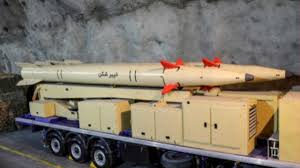
- 08 May 2025
In News:
Iran has recently introduced a new solid-fuel medium-range ballistic missile (MRBM) named GhassemBasir.
About the GhassemBasir Missile
The missile is designed to engage targets at distances exceeding 1,200 kilometers, enhancing Iran’s strategic strike capabilities.
Key Features:
- Size and Weight: The missile measures approximately 11 meters in length and weighs around 7 tons.
- Advanced Materials: Its airframe is reportedly constructed using carbon fiber composite materials, which reduce structural weight and lower its radar signature.
- Warhead: The missile carries a warhead estimated to weigh about 500 kilograms.
- Propulsion: Powered by a solid-fuel system, the missile benefits from quicker launch readiness and improved storage stability compared to liquid-fuel missiles.
- Speed: Capable of reaching speeds up to Mach 12.
- Guidance System: Equipped with a thermal imaging sensor that enables the missile to detect and home in on targets by sensing heat signatures during the final flight phase.
- Maneuverable Reentry Vehicle (MaRV): The missile features a MaRV that separates from the booster, reducing aerodynamic drag, decreasing radar detectability, and enhancing ballistic performance.
- Mobility: It can be launched from mobile transporter-erector-launchers (TELs), including vehicles resembling civilian trucks, increasing its operational flexibility and survivability.
Alcatraz Island
- 08 May 2025
In News:
The President of the United States has recently instructed his administration to undertake a project to rebuild and expand Alcatraz, the notorious prison that has been closed for over six decades. This historic site is located on a remote island off the coast of San Francisco, California.
About Alcatraz Island
Alcatraz Island, often referred to as “The Rock,” is a small rocky island situated in San Francisco Bay, California, covering approximately 22 acres (9 hectares).
Historical Overview
- 1849: The island was sold to the U.S. government.
- 1854: Alcatraz became home to the first lighthouse on California’s coast.
- 1859: The first permanent army troops were stationed on the island.
- 1861: Alcatraz was converted into a military prison.
- 1907: It was officially designated as the Pacific Branch of the U.S. Military Prison.
- 1933: The U.S. Army vacated the island.
- 1934–1963: Alcatraz functioned as a federal prison, housing some of America’s most dangerous criminals.
Prison Details
The prison had a capacity to hold over 330 inmates in cells measuring approximately 10 feet by 4.5 feet (3 meters by 1.5 meters). However, the actual number of prisoners rarely exceeded 260 at any given time. Known as the most secure and inescapable prison in the United States, Alcatraz was famous for its isolation and strict security measures. Although a few inmates attempted to escape, the harsh currents of San Francisco Bay made survival unlikely.
Closure and Current Status
Due to the high costs of upkeep, the prison was officially closed in March 1963. In 1972, Alcatraz was incorporated into the newly established Golden Gate National Recreation Area and was opened to the public. Today, it remains a popular tourist destination, attracting visitors from around the world.
Organization of Islamic Cooperation (OIC)
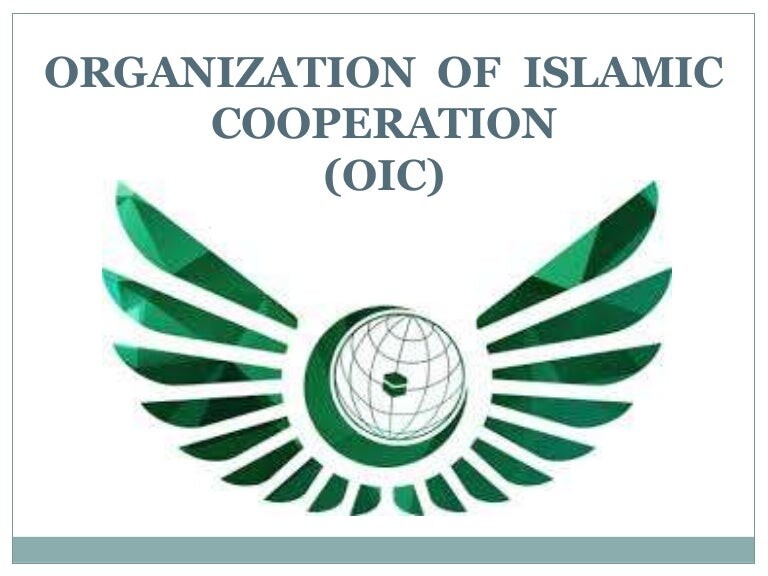
- 08 May 2025
About the OIC
The Organization of Islamic Cooperation (OIC) is the world’s second-largest intergovernmental organization after the United Nations, comprising 57 member states across four continents. It was established on September 25, 1969, following the historic summit held in Rabat, Morocco, which was convened in response to the arson attack on the Al-Aqsa Mosque in occupied Jerusalem.
Objectives and Purpose
The OIC’s primary goals are to:
- Preserve and promote Islamic values.
- Safeguard the national sovereignty and independence of its member states.
- Contribute to international peace and security.
- Serve as the collective voice of the Muslim world, protecting their interests across economic, social, and political spheres.
Structure and Headquarters
- The OIC’s headquarters is located in Jeddah, Saudi Arabia.
- Its official languages are Arabic, English, and French.
Membership
Notable member countries include Afghanistan, Bahrain, Bangladesh, Egypt, Indonesia, Iran, Iraq, Jordan, Kuwait, Lebanon, Libya, Malaysia, Maldives, Morocco, Niger, Oman, Pakistan, the Palestinian Authority, Qatar, Saudi Arabia, Sudan, Turkey, Uganda, United Arab Emirates, and Yemen, among others.
Principal Organs of the OIC
- Islamic Summit Conference (ISC):The highest authority of the OIC, meeting every three years to set the organization’s policies and strategic direction.
- Council of Foreign Ministers (CFM):Convening annually, the CFM reviews and oversees the implementation of decisions made by the Islamic Summit.
- General Secretariat:The executive branch responsible for executing the resolutions of the ISC and CFM.
Additionally, the OIC has established various ministerial-level committees—some chaired by heads of state—to coordinate cooperation among member countries in political, economic, cultural, social, spiritual, and scientific fields.
Partnerships and Global Engagement
The OIC collaborates closely with international organizations, including all specialized agencies of the United Nations, as well as governments and civil society organizations (CSOs). These partnerships help address concerns affecting its member states and the global Muslim community.
INS Sharda
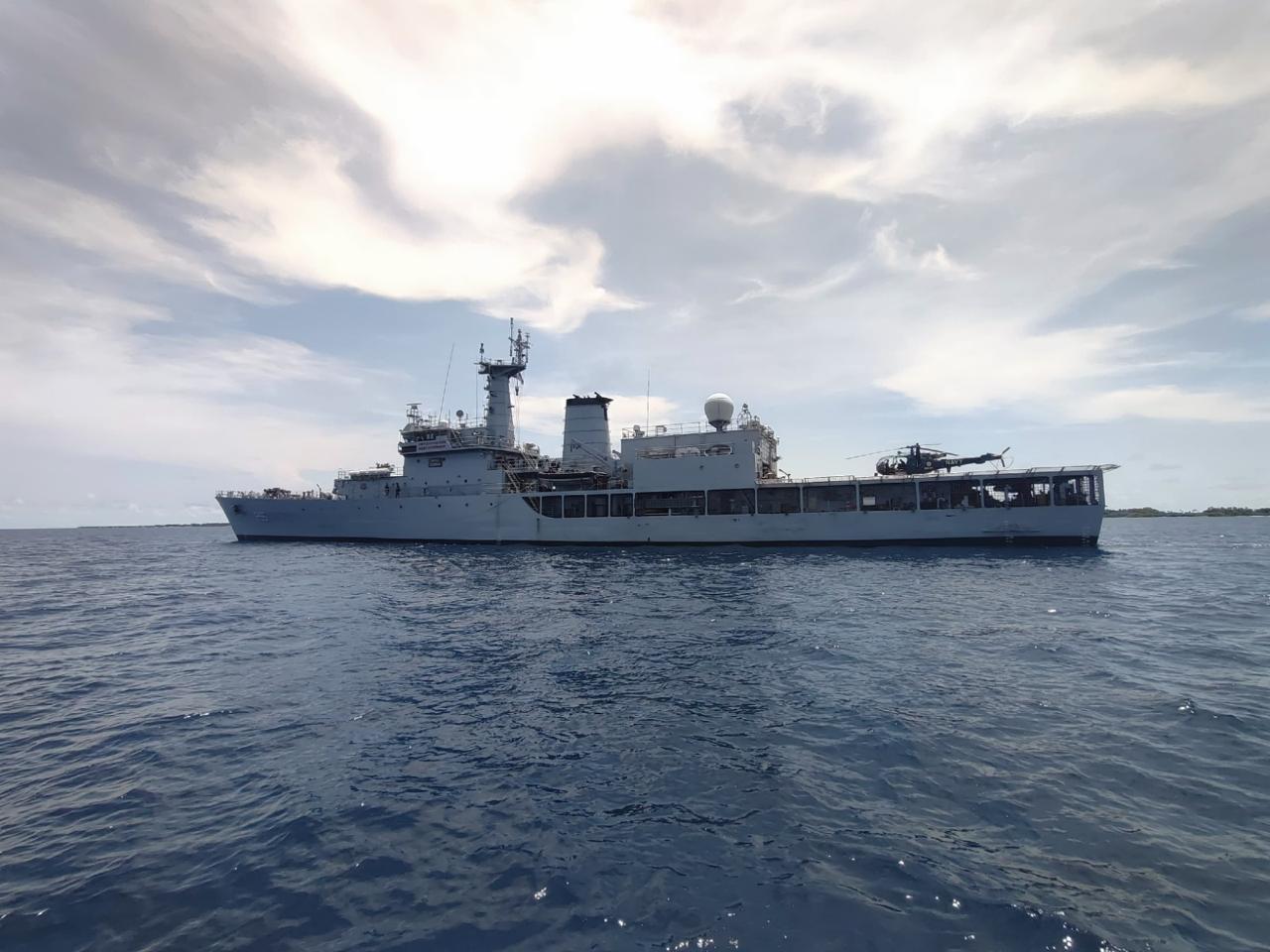
- 08 May 2025
In News:
The Indian Navy’s offshore patrol vessel, INS Sharda, has reached Maafilaafushi Atoll in the Maldives to participate in its first-ever Humanitarian Assistance and Disaster Relief (HADR) exercise, scheduled from May 4 to May 10, 2025.
Strengthening Regional Maritime Cooperation and Disaster Preparedness
This exercise is a key part of India’s strategic efforts to enhance regional maritime cooperation and bolster disaster readiness within the Indian Ocean Region (IOR). It underscores India’s steadfast commitment to its “Neighbourhood First” Policy, which recognizes the Maldives as a close maritime neighbour with deep strategic and cultural ties.
Aligning with the MAHASAGAR Vision
The HADR exercise supports the recently unveiled MAHASAGAR vision—Mutual and Holistic Advancement for Security and Growth Across Regions—introduced by the Prime Minister during the Mauritius visit. MAHASAGAR reaffirms India’s role as a net security provider and first responder in the Indian Ocean, building on the earlier SAGAR doctrine (Security and Growth for All in the Region). Both frameworks emphasize inclusive security, regional cooperation, and disaster resilience.
Objectives of the HADR Exercise
According to the Indian Navy, the exercise aims to:
- Enhance interoperability between the Indian Navy and the Maldives National Defence Force (MNDF).
- Conduct joint drills focusing on Search and Rescue (SAR), disaster response coordination, logistical support, and medical aid.
- Facilitate training programs for capacity building among personnel.
- Engage with local communities to raise awareness and strengthen disaster preparedness.
This maiden HADR exercise by INS Sharda marks a significant step toward deepening India-Maldives maritime collaboration and regional disaster management capabilities.
Metal-Free Catalyst for Hydrogen Fuel Production
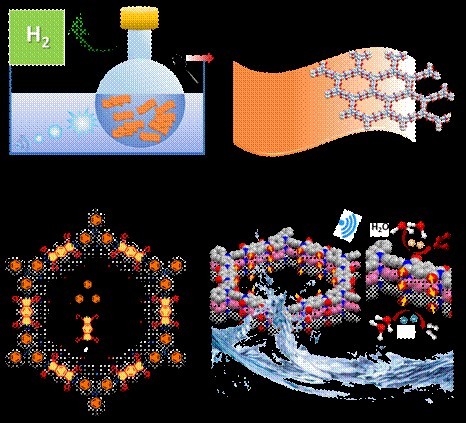
- 08 May 2025
In News:
In a significant breakthrough for clean energy technology, Indian scientists have engineered a metal-free catalyst capable of generating hydrogen fuel by harnessing mechanical energy. This innovation marks a major step forward in sustainable hydrogen production, aligning closely with India’s National Green Hydrogen Mission and its goal to lead in green energy solutions.
What is the Metal-Free Catalyst?
The catalyst is a specially designed donor-acceptor covalent organic framework (COF) that functions as a piezocatalyst without relying on any metal components. It can efficiently split water molecules to produce hydrogen gas (H?) when subjected to mechanical forces such as vibrations or pressure.
Development and Collaboration
This pioneering catalyst was developed at the Jawaharlal Nehru Centre for Advanced Scientific Research (JNCASR) in Bengaluru, under the leadership of Professor Tapas K. Maji. The project was carried out in collaboration with the Indian Institute of Science Education and Research (IISER) Pune and Wroc?aw University of Science and Technology in Poland.
Key Features of the Catalyst
- Metal-Free Composition: Made entirely from organic molecules, specifically TAPA (donor) and PDA (acceptor), connected through stable imide bonds.
- Ferrielectric Ordering (FiE): This internal property creates strong electric fields within the material, driving the catalytic water-splitting process.
- Porous, Sponge-like Structure: Enhances water permeability and promotes efficient separation of charges generated during the reaction.
- Mechanically Activated: The catalyst produces electron-hole pairs when exposed to mechanical pressure, enabling effective hydrogen generation.
Significance and Impact
- Environmentally Friendly: Eliminates the need for expensive and potentially harmful metal-based catalysts by using sustainable organic materials.
- Energy-Efficient: Utilizes ambient mechanical energy sources, such as vibrations or applied pressure, to power hydrogen production.
- Supports India’s Clean Energy Goals: Advances the objectives of the National Green Hydrogen Mission, strengthening India’s position in global clean energy innovation and reducing dependence on fossil fuels.
- Scalable and Cost-Effective: Offers a practical and affordable alternative to conventional metal-based hydrogen production technologies, making it suitable for widespread adoption.
India to Receive INS Tamal
- 07 May 2025
In News:
India is set to induct INS Tamal, the second advanced stealth frigate of the Krivak-III class, built in Russia under a bilateral defence contract.
About INS Tamal
- Type & Class:INS Tamal is a 3,900-tonne stealth frigate, part of the Krivak-III class deal signed in 2016 between India and Russia. It is the sister ship of INS Tushil, commissioned in December 2024.
- Builder & Collaboration:Constructed at the Yantar Shipyard in Kaliningrad, Russia, under India-Russia defence cooperation.
The contract includes four frigates: two built in Russia and two under construction at Goa Shipyard with technology transfer.
Key Features
- Stealth Technology:Equipped with advanced suppression systems for radio, infrared, and acoustic signatures to enhance survivability.
- Armaments:
- BrahMos supersonic cruise missiles (range approx. 450 km)
- Shtil surface-to-air missiles
- Anti-submarine torpedoes and rocket launchers
- Performance:
- Speed exceeding 30 knots
- Can deploy Kamov-28 and Kamov-31 helicopters for anti-submarine warfare and airborne early warning.
- Automation: High automation reduces crew workload and improves operational efficiency.
Strategic Importance
- Enhances India’s blue-water naval capabilities across air, surface, underwater, and electromagnetic domains.
- Strengthens naval deterrence and force projection in the Indo-Pacific region, especially amid rising tensions in the Arabian Sea.
- Demonstrates successful Make in India initiative combined with global collaboration, as two of the frigates are being built domestically at Goa Shipyard.
Rare 7th-Century Old Kannada Inscription unearthed at Madapura Lake, Karnataka
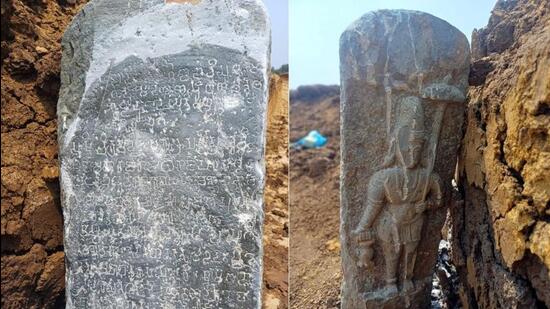
- 07 May 2025
In News:
A rare 7th-century Old Kannada inscription from the reign of Vikramaditya I of the Badami Chalukyas has been discovered at Madapura Lake in Davangere, Karnataka. The inscription sheds light on taxation, land grants, and regional governance during his rule.
About the Badami Chalukyas
- Origins: Emerged as a regional Kannada power claiming descent from Ayodhya to establish legitimacy.
- Capital:Vatapi (present-day Badami, Karnataka).
- Notable Rulers and Political History:
- Pulakesin I (543–566 CE): Founder of the dynasty; fortified Badami.
- Pulakesin II (609–642 CE): Most celebrated ruler; defeated Harshavardhana at the Narmada river; established diplomatic contacts with Persia (depicted in Ajanta caves).
- Vikramaditya I (644–681 CE): Son of Pulakesin II; reclaimed Badami from Pallavas and expanded influence over southern kingdoms like the Cholas, Pandyas, and Keralas.
- Administration:
- Centralised monarchy with limited autonomy granted to villages.
- Economy relied on land revenue and military conquests.
- Maintained a naval fleet—Pulakesin II had around 100 ships.
- Religion:Patronised Shaivism, Vaishnavism, Shaktism, and Jainism. Vikramaditya I and others made donations to Jain institutions; Pulakesin I performed Ashvamedha Yajna.
- Art and Architecture:
- Developed the Vesara style, a fusion of northern Nagara and southern Dravida temple architecture.
- Constructed rock-cut and structural temples in Aihole, Badami, and Pattadakal.
About Vikramaditya I
- Background: Son of Pulakesin II; ascended the throne during a period of political turmoil following his father's death and Pallava invasion.
- Military Achievements:
- Defeated Narasimhavarman I of the Pallavas, who had earlier seized Badami.
- Reunited the fractured Chalukya empire, restoring its former prestige.
- Subdued southern powers including the Cholas, Pandyas, and Keralas, consolidating control over the southern Deccan.
- Political Consolidation:
- Re-established central authority across Karnataka and surrounding regions.
- Appointed loyal feudatories, such as Singhavenna (mentioned in the new Davangere inscription), to manage local governance.
- Legacy:
- Known by titles such as Rajamalla (King of Kings) and Yuddhamalla (Warrior King).
- His reign marked a revival of Chalukya power and paved the way for cultural and architectural achievements under his successors Vikramaditya II and Kirtivarman II.
India-Angola Bilateral Talks and Strategic Cooperation
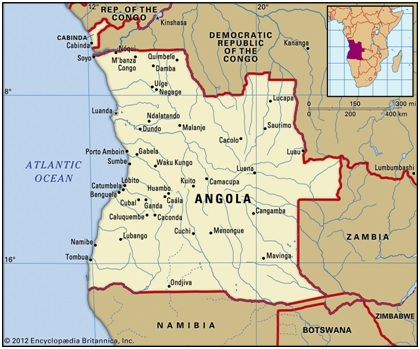
- 07 May 2025
In News:
The Prime Minister of India recently held bilateral talks with Angolan President João Lourenço in New Delhi. During the meeting, India offered Angola a $200 million defence credit line and discussed expanding cooperation in sectors such as infrastructure, defence, and space technology. The visit also commemorates the 40th anniversary of diplomatic relations between India and Angola.
About Angola
- Location: Southwestern Africa, bordered by the Atlantic Ocean to the west.
- Capital: Luanda, a major coastal port city.
- Neighbouring countries: Republic of the Congo, Democratic Republic of the Congo, Zambia, Namibia, and the Atlantic Ocean.
- Special territory: Includes the exclave of Cabinda, located north of the main territory.
Geographical Features
- Major Plateaus:Bié Plateau (~2,600 m), Huíla Plateau (~2,300 m), Malanje Highlands.
- Highest Point: Mount Moco (2,620 m or 8,596 ft) near Huambo.
- Rivers:
- Cuanza (Kwanza): Largest river entirely within Angola.
- Cunene River: Forms part of the border with Namibia.
- Cuango River: Tributary of the Congo River.
- Other rivers drain into the Zambezi and Okavango river systems.
- Desert: Southwest Angola forms part of the Namib Desert.
- Climate: Tropical with distinct rainy and dry seasons, influenced by the cold Benguela ocean current.
Demographics and Economy
- Ethnic groups: Predominantly Bantu-speaking, including Ovimbundu, Kimbundu, and Bakongo communities.
- Economic importance:
- One of Africa’s leading oil producers.
- Rich mineral resources including diamonds, iron ore, copper, and gold.
- The northeast is notable for diamond deposits found in river gravels.
ECINET: India’s Unified Digital Platform for Elections
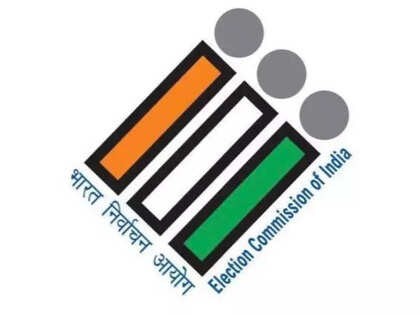
- 07 May 2025
In News:
The Election Commission of India (ECI) is set to launch ECINET, a single, unified digital platform aimed at consolidating and simplifying election-related services for voters, officials, political parties, and civil society organizations.
About ECINET:
ECINET will merge over 40 existing mobile and web applications—including the Voter Helpline, cVIGIL, Suvidha 2.0, ESMS, Saksham, KYC App, Voter Turnout app, Know Your Candidate app, and election results app—into one integrated system. This platform will also serve election officials such as Electoral Registration Officers and Booth Level Officers by providing a comprehensive interface.
Objectives:
- Simplify access to electoral services through a single window and one login (single sign-on).
- Eliminate the redundancy of multiple applications and multiple logins.
- Provide real-time access to verified and authenticated election data for all stakeholders.
- Strengthen electoral infrastructure by fostering digital innovation and integration.
- Enhance cybersecurity through robust testing and protocols.
Key Features:
- Unified Platform: Consolidates all election-related apps into one.
- Single Sign-On: One login credential for all services reduces confusion.
- Cross-Device Compatibility: Accessible on smartphones and desktops alike.
- Modern User Interface: Intuitive and user-friendly design.
- Data Integrity: Only authorized ECI officials can enter data, with statutory forms prevailing in case of discrepancies.
- Robust Cybersecurity: Rigorous trials to ensure safety and performance.
- Nationwide Coverage: Designed to serve nearly 100 crore voters and the entire electoral administration.
Timeline:
The ECINET platform is in advanced stages of development and testing and is expected to be launched before the Bihar Assembly elections later this year.
Stratospheric Airship Platform by DRDO

- 07 May 2025
In News:
India successfully conducted the maiden flight trial of its indigenous Stratospheric Airship Platform, developed by the Defence Research and Development Organisation (DRDO). The trial took place at Sheopur, Madhya Pradesh, and marked a significant milestone in India’s pursuit of advanced high-altitude surveillance technologies.
About the Stratospheric Airship Platform
- Nature: A lighter-than-air, high-altitude airship designed to operate at stratospheric heights (~17 km altitude).
- Developer: Aerial Delivery Research and Development Establishment (ADRDE), Agra under DRDO.
- Purpose: To provide extended surveillance and real-time observation capabilities for military and civilian applications.
Key Features and Flight Trial Details
- Successfully reached an altitude of about 17 km (stratosphere).
- Carried an instrumental payload for Intelligence, Surveillance, and Reconnaissance (ISR) tasks.
- Flight duration: Approximately 62 minutes.
- Tested crucial systems such as envelope pressure control and emergency deflation mechanisms.
- Data from onboard sensors will aid in developing simulation models for future flights.
- The platform was recovered post-mission for further analysis.
Strategic and Operational Significance
- Enhanced ISR: Boosts India’s military surveillance over borders, coastal regions, and conflict zones.
- Earth Observation: Supports disaster management, environmental monitoring, and communication relays.
- Cost-Effective: Provides persistent coverage at a fraction of the cost of satellite launches.
- Technological Edge: Places India among a select group of nations with indigenous high-altitude airship capabilities, crucial amid rising regional security challenges.
- Dual-Use Potential: Suitable for both defence and civilian applications, including atmospheric sensing.
Khelo India Youth Games 2025
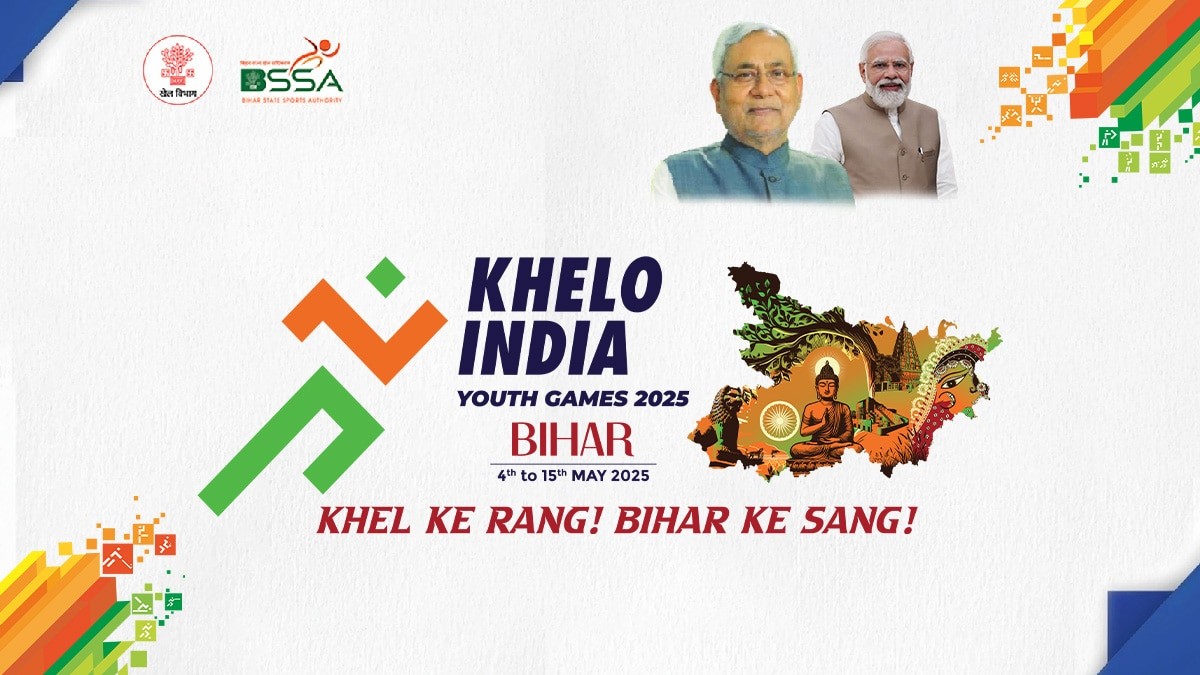
- 06 May 2025
In News:
- Prime Minister Narendra Modi virtually inaugurated the 7th edition of the Khelo India Youth Games (KIYG) on May 4, 2025, marking Bihar’s first time hosting a national-level multi-sport event.
- The event will be held across five cities in Bihar: Patna, Rajgir, Gaya, Bhagalpur, and Begusarai from May 4–15, 2025.
About Khelo India Youth Games (KIYG)
Feature Details
Launch Year 2018
Nodal Ministry Ministry of Youth Affairs and Sports
Target Group Youth athletes under 17 and 21 years of age
Objective Promote grassroots sports, mass participation, and talent
development for global competition
Host Cities in 2025 Patna, Rajgir, Gaya, Bhagalpur, Begusarai
Total Athletes (2025) Over 6,000 participants
Special Highlights of KIYG 2025
- Medal Events: Competitions held in 27 sporting disciplines.
- New Inclusions:
- Sepaktakraw included as a medal sport for the first time.
- Esports introduced as a demonstration event, reflecting the rise of digital-age sports.
- Support for Athletes: Winners eligible for scholarships under the Khelo India Scheme to pursue professional training.
Significance
- PM Modi emphasized the role of regular tournaments like KIYG in shaping India’s sports ecosystem.
- Cited Vaibhav Suryavanshi, a 14-year-old cricketer who scored a 38-ball century in IPL 2025, as a symbol of emerging youth talent.
- Highlighted that platforms like Khelo India events (youth, para, winter, and senior levels) help identify, nurture and promote talent, building confidence among young athletes.
Previous Editions of KIYG
Edition Host City
1st (2018) New Delhi
2nd (2019) Pune
3rd (2020) Guwahati
4th (2021) Panchkula
5th (2022) Bhopal
6th (2023) Chennai
7th (2025) Bihar (multiple cities)
DRR Dhan 100 (Kamala) &Pusa DST Rice 1
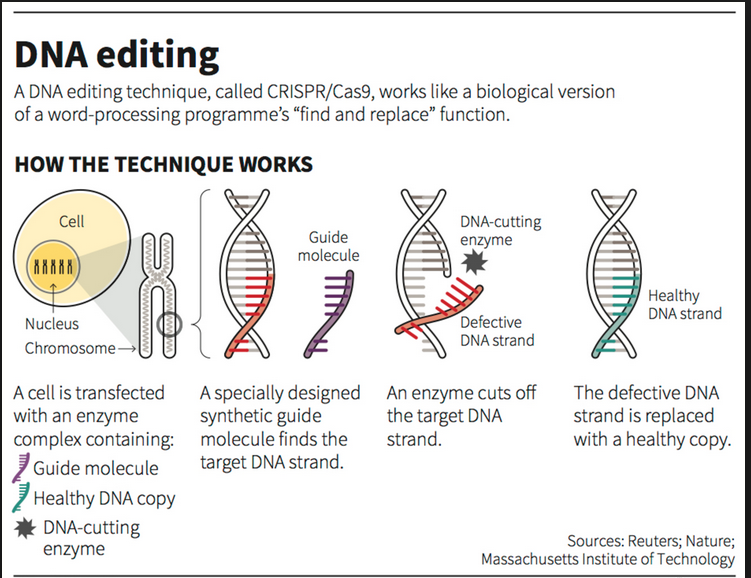
- 06 May 2025
In News:
- Recently, the Union Ministry of Agriculture and Farmers’ Welfare launched India’s first genome-edited rice varieties—DRR Dhan 100 (Kamala) and Pusa DST Rice 1.
- Developed by ICAR-IIRR (Hyderabad) and ICAR-IARI (New Delhi) using CRISPR-Cas9 technology under SDN1/SDN2 methods.
About the Varieties
DRR Dhan 100 (Kamala)
- Developed by: ICAR-Indian Institute of Rice Research (IIRR), Hyderabad
- Parent variety: Samba Mahsuri (BPT 5204)
- Features:
- 19% increase in yield
- Matures in ~130 days (20 days earlier than parent)
- Stronger stem – reduces lodging
- Saves ~7,500 million cubic meters of irrigation water
- Lower methane emissions
- Edited gene: CKX2 (Gn1a) – increases grain number per panicle
Pusa DST Rice 1
- Developed by: ICAR-Indian Agricultural Research Institute (IARI), New Delhi
- Parent variety: MTU 1010 (Cotton Dora Sannalu)
- Features:
- Improved tolerance to drought and salinity
- Yield increase: Up to 30.4% in saline/alkaline soils
- Edited gene: DST gene
- Developed using SDN1 genome editing – no foreign DNA inserted
Technology Used
- CRISPR-Cas9 genome editing system:
- Enables precise editing of native genes without inserting foreign DNA
- SDN1/SDN2 methods approved by India’s biosafety regulations
- Genome editing vs GMOs:
- Genome editing makes internal gene alterations
- GMOs involve insertion of foreign genetic material
- GM crops are banned for cultivation/import in India (except Bt cotton)
Benefits Claimed
- Increased agricultural productivity:
- 19% increase in yield (DRR Dhan 100)
- Up to 30.4% increase in saline soils (Pusa DST Rice 1)
- Environmental benefits:
- Reduced greenhouse gas emissions (~20%)
- Lower methane release due to early maturation
- Major water conservation
- Target states: Andhra Pradesh, Telangana, Tamil Nadu, Kerala, Karnataka, Chhattisgarh, Maharashtra, Madhya Pradesh, Odisha, Jharkhand, Bihar, Uttar Pradesh, West Bengal, and Puducherry
Concerns and Criticisms
Biosafety and Unintended Effects
- Unintended mutations: CRISPR-Cas enzymes may cause off-target gene edits, potentially resulting in unknown protein formations.
- Lack of global standardisation on enzyme concentration and specificity.
- Some scientists warn of genetic instability in SDN1-based edits.
Seed Sovereignty & Intellectual Property Rights (IPR)
- Genome editing tools are IPR-protected, raising concerns over farmers' seed sovereignty.
- Activist groups like Coalition for a GM-Free India demand transparency on IPR ownership and oppose reliance on proprietary technologies.
- Risk of monoculture, loss of rice genetic diversity, and trade barriers for India’s non-GM rice exports.
Policy and Regulatory Framework
- India’s biosafety guidelines (2022) permit SDN1 and SDN2 genome editing for general crops.
- The Union Budget 2023–24 allocated ?500 crore for advancing genome editing in agriculture.
- ICAR expanding genome editing to oilseeds and pulses.
Neanderthal Spear Tip Discovery
- 06 May 2025
In News:
Ancient bone spear tip found in Russia is oldest in Europe and made by Neanderthals.
What Was Discovered?
- Oldest known spear tip in Europe, crafted by Neanderthals, not Homo sapiens.
- Found in a cave in the North Caucasus region, Russia.
- Dated to 70,000–80,000 years ago, prior to modern human arrival in Europe (~45,000 years ago).
- Study published in the Journal of Archaeological Science.
Artefact Features
- Length: ~9 cm
- Material: Bone (likely from bison)
- Construction:
- Shaped using stone tools
- Attached to a wooden shaft with natural tar (early adhesive use)
- Function:
- Micro-cracks indicate impact with a hard target – used in hunting or combat
- Minimal wear, suggesting it was used shortly after construction
Excavation Details
- Excavated in 2003, thoroughly analyzed recently.
- Found with animal bones and campfire remains – evidence of Neanderthal habitation.
- Analytical techniques used: Spectroscopy, CT scans, Microscopy
Shear-Wave Splitting
- 06 May 2025
In News:
Scientists from the University of Oxford have proposed a new method to monitor volcanic eruptions by using the seismic phenomenon of shear-wave splitting, demonstrated at Mount Ontake in Japan.
What is Shear-Wave Splitting?
- Shear-wave splitting is a seismic phenomenon where shear (S) waves split into two components that travel at different speeds based on their polarisation.
- Occurs when waves pass through aligned cracks or fractures in subsurface rocks.
- Movement of magma and volcanic fluids changes stress conditions, causing rock cracks to open or close.
- These changes influence the speed and direction of shear waves.
- Increased shear-wave splitting can indicate rising internal pressure, serving as a potential early warning for volcanic eruptions.
Mount Ontake – Key Facts
- Type: Active stratovolcano
- Location: Honsh? Island, Central Japan, near Tokyo
- Status: Japan’s second-highest volcano
- Part of the Pacific Ring of Fire
- Major Eruption:
- Year: 2014
- Type: Phreatic eruption (steam-driven)
- Casualties: 60+ people, mainly hikers
- Notably occurred without significant seismic warning
- Phreatic Eruptions:
- Caused by steam pressure from heated underground water
- Do not involve new magma
- Difficult to predict using conventional methods
Pulsar G359 and Galactic ‘Bone’
- 06 May 2025
In News:
Astronomers have discovered a likely explanation for a fracture in a huge cosmic "bone" in the Milky Way galaxy, using NASA's Chandra X-ray Observatory and radio telescopes.
About G359.13-0.20005 ("The Snake")
- G359.13 is a non-thermal filament in the Milky Way, resembling a "galactic bone."
- It stretches about 230 light-years and is located ~26,000 light-years from Earth, near the Galactic Center.
- These filaments are visible primarily in radio waves and aligned with galactic magnetic field lines.
- Emissions result from charged particles spiraling along magnetic fields, producing synchrotron radiation.
Key Discovery
- A fracture has been observed in the continuous structure of G359.13.
- This fracture aligns with the location of a pulsar, identified using:
- Chandra X-ray Observatory (X-ray data)
- MeerKAT and VLA (radio data)
About the Pulsar
- A highly magnetized, fast-moving neutron star formed by a supernova explosion.
- Estimated speed: 1–2 million miles per hour.
- The pulsar likely collided with G359.13, causing:
- Distortion in the magnetic field
- Fracture in the radio filament
- Chandra data revealed blue-colored X-ray emissions from the pulsar.
- Nearby X-ray sources may be from electrons and positrons accelerated to high energies.
Scientific Significance
- Provides insights into:
- High-energy astrophysical processes
- Pulsar interactions with galactic magnetic structures
Chandra X-ray Observatory – Key Facts
- Launched: July 23, 1999, aboard Space Shuttle Columbia (STS-93)
- Function: Detects X-ray emissions from hot cosmic objects (e.g., black holes, supernova remnants)
- Orbit: High Earth orbit (~139,000 km altitude) to avoid atmospheric X-ray absorption
- Part of NASA’s “Great Observatories” (with Hubble, Spitzer, Compton)
- Capabilities:
- 8x better resolution than previous X-ray missions
- Detects X-ray sources 20 times fainter than predecessors
- Managed by: NASA’s Marshall Space Flight Center
Orange Economy
- 05 May 2025
In News:
At the World Audio Visual Entertainment Summit (WAVES) held in Mumbai, Prime Minister Narendra Modi highlighted the transformative potential of India's Orange Economy—a sector driven by creativity, content, and culture. With Indian films now screened in over 100 countries and a surge in OTT platform consumption, India is fast emerging as a global content leader.
What is the Orange Economy?
Also known as the Creative Economy, the Orange Economy encompasses industries rooted in individual creativity, talent, and intellectual property. Coined by Colombian economists Felipe Buitrago and Iván Duque, the term “orange” reflects the vibrancy of cultural identity and innovation.
Core Sectors:
- Advertising, architecture, and design
- Arts and crafts, fashion, and publishing
- Film, music, performing arts, and photography
- Animation, gaming, software, and digital media
- Television, radio, and electronic publishing
- Research and development (R&D)
Key Features of the Orange Economy
- Knowledge-driven and innovation-centric
- Promotes cultural diversity and economic inclusivity
- Combines economic, social, and cultural dimensions
- Strong links to technology, tourism, and intellectual property rights
Global and National Significance
- As per UNESCO, the Orange Economy contributes approximately 3% to global GDP and supports over 30 million jobs worldwide.
- The global animation industry alone is valued at $430 billion.
- In India, the creative sector is being nurtured through flagship initiatives like Skill India, Startup India, and platforms such as WAVES, aiming to empower young creators—from Guwahati musicians to Kochi podcasters.
Government Support and Vision
Emphasized that though the "screen may be shrinking, the scope is infinite," underlining the massive potential of digital platforms and content innovation. The government is actively working to build an enabling ecosystem for the creative economy, blending economic growth with cultural preservation.
Vizhinjam International Seaport
- 05 May 2025
In News:
The Vizhinjam International Seaport in Kerala is set to be inaugurated by the Prime Minister, marking a significant milestone in India’s maritime infrastructure.
Key Highlights
- Location: Situated at Vizhinjam, near Thiruvananthapuram in Kerala.
- Type: India’s first dedicated transshipment port and semi-automated seaport.
- Development Model: Built under the Public-Private Partnership (PPP) model at an estimated cost of ?8,900 crore. The port is operated by the Adani Group, while the Kerala Government retains majority ownership.
Technical Features
- Deepest Breakwater in India: Spanning about 3 km with a natural depth of ~20 metres, enabling accommodation of large container vessels.
- Minimal Littoral Drift: Reduced sediment movement along the coast helps lower maintenance costs significantly.
- AI-Powered Vessel Traffic Management: India’s first indigenous VTMS system developed in collaboration with IIT Madras.
- Advanced Automation:
- Fully automated yard cranes.
- Remotely operated ship-to-shore cranes for efficient and safe cargo handling.
Strategic Importance
- Proximity to Global Shipping Lanes: Located just 10 nautical miles from a key international East-West shipping route.
- Boost to Domestic Transshipment:
- Currently, around 75% of India’s transshipment traffic is handled by foreign ports such as Colombo and Singapore.
- Vizhinjam is expected to reduce foreign exchange outflows and increase India's share in global maritime trade.
- International Connectivity: The port is now connected to global maritime hubs like Shanghai, Singapore, and Busan.
Future Prospects
- Multi-Modal Integration:
- Direct linkage to National Highway-66 (NH-66).
- Kerala’s first cloverleaf interchange for seamless traffic movement.
- An upcoming railway link to integrate the port with the national railway grid.
- Vision: Aims to become a major multi-modal logistics hub supporting India’s broader maritime and trade ambitions under Sagarmala and PM Gati Shakti initiatives.
Annual Survey of Services Sector Enterprises (ASSSE)
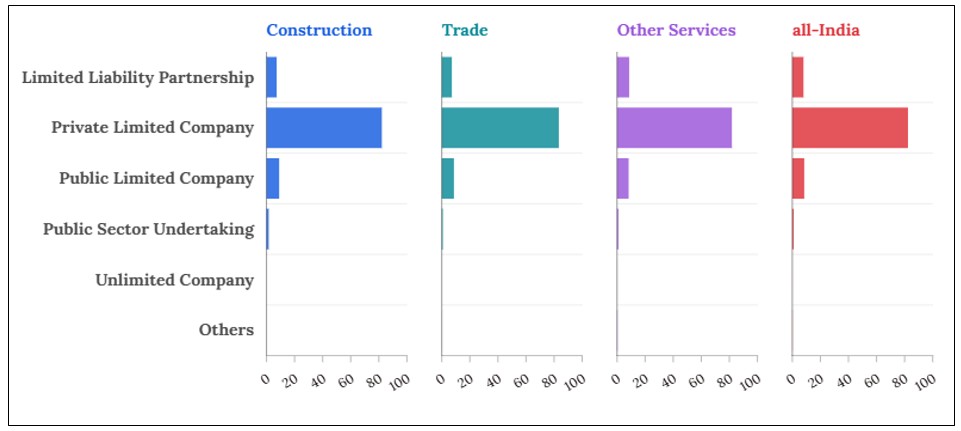
- 05 May 2025
In News:
The Ministry of Statistics and Programme Implementation (MoSPI) recently released findings from a pilot study on the Annual Survey of Services Sector Enterprises (ASSSE). This initiative aims to fill a crucial data gap regarding India’s incorporated service sector, which is not currently covered by regular surveys like the Annual Survey of Unincorporated Sector Enterprises (ASUSE).
Significance of the Services Sector
- Contribution to Economy: The services sector contributed ~55% of India's Gross Value Added (GVA) in FY 2024–25, up from 50.6% in FY14.
- Employment: It employs around 30% of India’s workforce, spanning industries like IT, finance, education, tourism, and healthcare.
- Trade: India’s services exports stood at USD 280.94 billion (April–Dec 2024). In ICT services, India is the 2nd-largest global exporter, accounting for 10.2% of global exports.
- FDI Magnet: The sector attracted USD 116.72 billion in FDI (April 2000–Dec 2024)—about 16% of total FDI inflows.
- Support to Digital India & Urbanization: The sector underpins the Digital India initiative and Smart Cities Mission by enabling digital payments, urban mobility, e-governance, and waste management.
About the ASSSE Pilot Study
Purpose & Objectives
- To test the suitability of the GSTN (Goods and Services Tax Network) database as a sampling frame.
- To develop robust survey instruments and methodology for a full-scale annual survey starting January 2026.
- To gather data on economic characteristics, employment, and financial indicators from incorporated enterprises under:
- Companies Act, 1956/2013
- Limited Liability Partnership (LLP) Act, 2008
Survey Coverage
- Conducted in two phases:
- Phase I (May–Aug 2024): Verified enterprise data for 10,005 units.
- Phase II (Nov 2024–Jan 2025): Collected detailed data from 5,020 enterprises under the Collection of Statistics Act, 2008.
- Data collected for FY 2022–23 using CAPI (Computer-Assisted Personal Interviewing).
Key Findings:
Enterprise Type Distribution
- Private Limited Companies: 82.4%
- Public Limited Companies and LLPs: ~8% each
Size-Class Analysis (FY 2022–23)
Output Class (?) % Share of Gross Value Added (GVA) % Share of Fixed Assets % Share of Employment
< 10 crore 1.19% 2.64% 9.28%
10–100 crore 9.45% 9.58% 20.03%
100–500 crore 19.90% 25.00% 33.73%
> 500 crore 69.47% 62.77% 36.96%
- Large enterprises (output > ?500 crore) dominate in assets, value addition, and compensation paid, but smaller units employ over 63% of the total workforce in the sample.
Additional Establishments
- 28.5% of enterprises reported having additional business locations within the state.
- Highest in the Trade sector (41.8%).
Insights and Challenges from the Pilot
- Suitability of GSTN as Sampling Frame: Confirmed.
- Challenges Faced:
- Data retrieval from enterprises with headquarters in other states.
- Centralized data (CIN-based) posed difficulty in disaggregating state-level data.
- Positive Outcomes:
- High response rate and cooperation.
- Survey instruments found largely clear and functional.
Challenges Faced by the Services Sector
- Skill Gaps:
- Only 51.25% of youth are employable (Economic Survey 2023–24).
- Merely 5% of workforce is formally skilled (WEF).
- Informality:
- About 78% of service jobs were informal in 2017–18.
- Gig workers lack social protection.
- Global Competition:
- Visa restrictions (e.g., H-1B in the US).
- Competing hubs: Philippines, Vietnam.
- Rising IT wage costs in India.
- Infrastructure Deficiencies:
- Inadequate AI/ML adoption.
- Digital divide persists in rural and marginalized MSMEs.
- Post-COVID Recovery:
- Inbound tourism yet to reach pre-pandemic levels (90% of 2019 arrivals in H1 2024).
Way Forward
- Upskilling Initiatives:
- Expand Skill India Digital and PMKVY 4.0.
- Promote Prime Minister Internship Scheme (PMIS) for bridging academia-industry gap.
- Boosting Global Competitiveness:
- Negotiate FTAs with EU, UK, Australia.
- Expand Global Capability Centres (GCCs).
- Digital Infrastructure & Security:
- Strengthen cybersecurity frameworks and promote secure cloud adoption.
- Improve digital literacy, especially in financial services.
- Decentralized Growth:As per NITI Aayog, promote services sector in Tier-2 and Tier-3 cities with better infrastructure and connectivity.
Global Wind Energy Report 2025
- 05 May 2025
In News:
The Global Wind Energy Council (GWEC), in its Global Wind Report 2025, has warned that current global wind energy growth is insufficient to meet the targets aligned with the Paris Agreement and net-zero emissions by 2050. As per the report, at current trends, only 77% of the wind capacity required by 2030 will be achieved — putting the 1.5°C global warming limit at serious risk.
Global Wind Energy Landscape (as of 2024)
- New Capacity Added: 117 GW (up from 116.6 GW in 2023)
- Total Global Capacity: 1,136 GW
- Leading Countries:
- China: 70% of new installations
- USA, Brazil, India, and Germany followed.
- Emerging Markets: Uzbekistan, Egypt, and Saudi Arabia showed significant growth.
- Regional Progress:
- Africa and Middle East: Onshore wind capacity doubled compared to previous years.
- Offshore Wind: Only 8 GW added (down 26% from 2023), the lowest since 2021.
Key Challenges Identified by GWEC
- Policy Uncertainty: Regulatory delays and instability in key markets.
- Grid Infrastructure Deficits: Underinvestment in transmission and distribution systems.
- Financial Constraints: Inflation, high interest rates, trade protectionism.
- Market Inefficiencies: Weak renewable energy auction systems.
Global Commitments & Urgency
- At COP28 (Dubai), countries pledged to triple renewable energy capacity by 2030.
- To align with this goal, annual wind installations must rise to 320 GW by 2030.
- Failure to scale up urgently risks missing a vital climate mitigation window.
Wind Energy in India – Status and Prospects (as of March 2025)
- Total Installed Capacity: 50.04 GW
- Capacity Added (FY 2024–25): 4.15 GW
- (Up from 3.25 GW in FY 2023–24)
- Global Rank: 4th largest wind power producer (after China, USA, Germany)
- Top States:
- Gujarat
- Tamil Nadu
- Karnataka
- Manufacturing Strength: Domestic wind turbine manufacturing capacity is ~18,000 MW/year.
- Offshore Wind Potential:
- Gujarat: 36 GW
- Tamil Nadu: 35 GW
Exercise DUSTLIK

- 05 May 2025
In News:
The 6th edition of Exercise DUSTLIK, a bilateral joint military exercise between India and Uzbekistan, was recently held at the Foreign Training Node in Aundh, Pune. The previous edition (2024) was conducted in Termez, Uzbekistan.
Key Highlights:
- Exercise Theme: Joint Multi-Domain Sub-Conventional Operations in Semi-Urban Terrain.
- Aimed at simulating counter-terrorism operations, especially in scenarios involving territorial capture by terrorist groups.
- Indian contingent: 60 personnel from the JAT Regiment and the Indian Air Force (IAF).
- Uzbek contingent: Personnel from the Uzbekistan Army.
Core Activities:
- Establishment of a Joint Operations Centre at the battalion level.
- Execution of population control, raids, search-and-destroy operations.
- Use of air assets: drones, helicopters for reconnaissance, Special Heliborne Operations (SHBO), Small Team Insertion and Extraction (STIE).
- Focus on counter-UAS (unmanned aerial systems) measures and logistics support in hostile conditions.
Objectives:
- Enhance interoperability, tactical coordination, and operational synergy between the two armies.
- Promote defence cooperation and strengthen bilateral relations between India and Uzbekistan.
- Exchange of best practices in conducting joint sub-conventional operations.
About Uzbekistan:
- Doubly landlocked country in Central Asia, located between the Syr Darya and Amu Darya rivers.
- Borders: Kazakhstan, Kyrgyzstan, Tajikistan, Afghanistan, and Turkmenistan.
Operation Hawk 2025
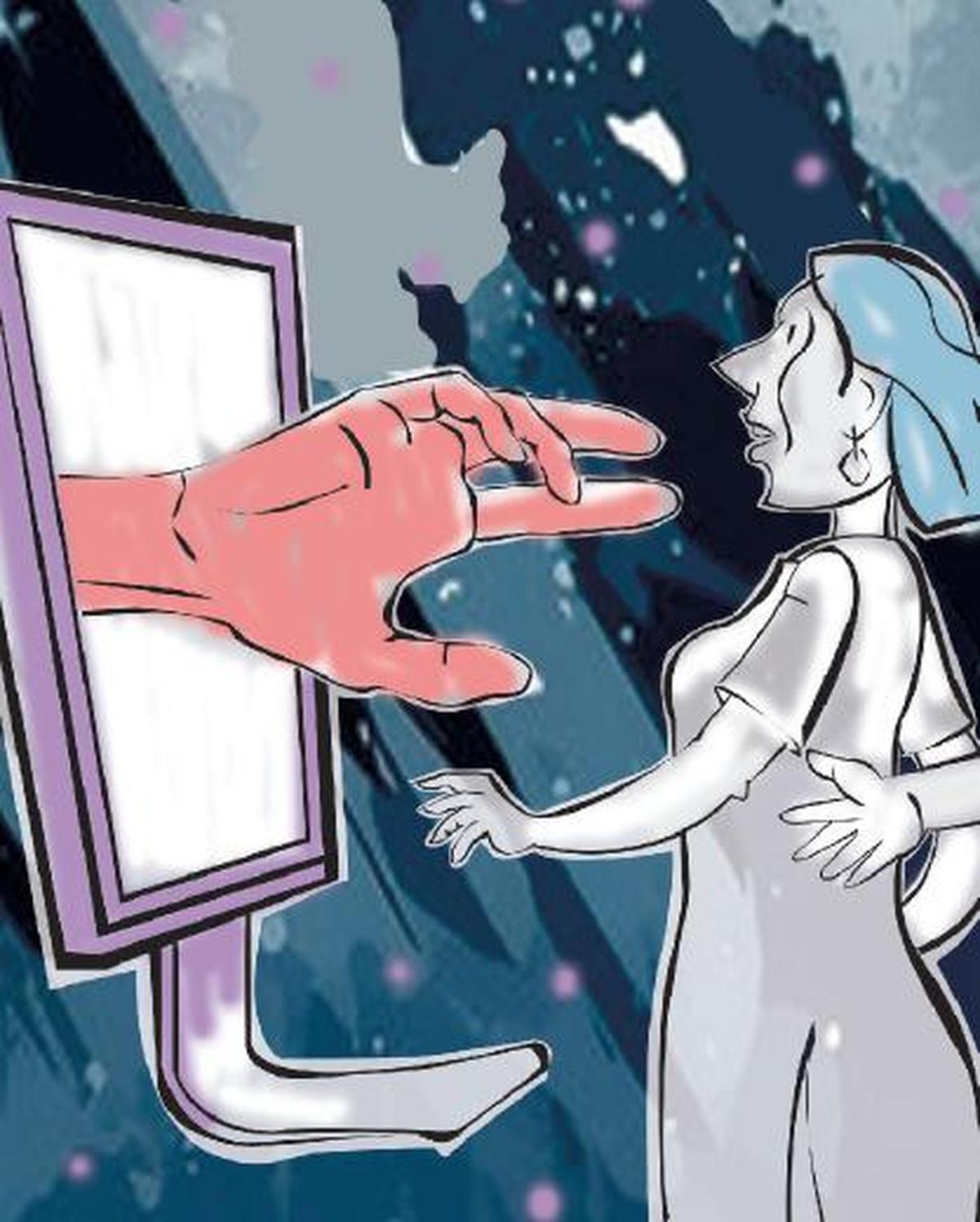
- 04 May 2025
In News:
The Central Bureau of Investigation (CBI) has launched Operation Hawk in 2025 to combat international cybercrime networks involved in online child sexual exploitation (OCSE). The operation led to arrests in Delhi and Mumbai, following inputs from foreign agencies including the United States.
About Operation Hawk
Feature Details
Launched By CBI’s International Operations Division
Year of Launch 2025
Main Objective Target and dismantle cybercriminal networks engaged in OCSE
Scope International cooperation, digital forensics, and prosecution
Key Objectives
- Disrupt organized cyber-pedophile networks.
- Enhance coordination with agencies like Interpol, FBI, and foreign governments.
- Strengthen legal action under IPC, IT Act, and POCSO Act.
- Address complaints involving Indian nationals from foreign jurisdictions.
- Boost cross-border digital evidence collection and swift response systems.
Previous Related Operations
- Operation CARBON (2021):Targeted dark web CSAM (Child Sexual Abuse Material) users globally.
- Operation MEGH CHAKRA (2022):Pan-India action based on Interpol alerts; resulted in large-scale arrests and digital data seizures.
India’s First Inter-State Cheetah Conservation Corridor
- 04 May 2025
In News:
Rajasthan has joined hands with Madhya Pradesh to develop India’s first inter-state cheetah conservation corridor, a landmark initiative under the Cheetah Reintroduction Project. The corridor will facilitate the safe movement of cheetahs across a 17,000 sq. km protected landscape, enhancing conservation and habitat connectivity.
Key Features of the Cheetah Conservation Corridor
Aspect Details
Total Area 17,000 sq. km (MP: 10,500 sq. km; Rajasthan: 6,500 sq. km)
States Involved Madhya Pradesh and Rajasthan
Supported by National Tiger Conservation Authority (NTCA), Wildlife Institute of India (WII)
MoU Status In progress between Chief Ministers of MP and Rajasthan
Geographical Scope and Key Sites
- PalpurKuno National Park (MP):Core site for cheetah reintroduction; located in Sheopur district.
- Gandhi Sagar Sanctuary (MP):Being developed as a second habitat for cheetahs; located in Mandsaur district along the Chambal River.
- Mukundara Hills Tiger Reserve (Rajasthan):Proposed extension site; comprises parts of Darrah, Jawahar Sagar, and Chambal sanctuaries in Kota division.
- Rajasthan Districts Involved:Kota, Bundi, Baran, Jhalawar, Sawai Madhopur, Karauli, Chittorgarh
- Proposed Future Expansion:Forest regions of Jhansi and Lalitpur in Uttar Pradesh
Objectives and Benefits
- Inter-State Wildlife Connectivity:India’s first corridor linking cheetah habitats across state borders.
- Seamless Migration:Enables cheetahs to roam freely between reserves, mimicking natural ecological patterns.
- Ecological Restoration:Aims to revive and conserve India’s arid grassland ecosystems, which are essential habitats for cheetahs.
- Federal Conservation Model:Demonstrates cooperative federalism in wildlife management and biodiversity conservation.
- Global Recognition:Touted as a unique conservation model in Asia, aligning with Convention on Biological Diversity (CBD) targets.
India’s Green Hydrogen Push
- 04 May 2025
In News:
India has signed agreements to supply 4.12 lakh tonnes of green hydrogen derivatives to Japan and Singapore, signaling its emergence as a global leader in green hydrogen. Simultaneously, the Green Hydrogen Certification Scheme of India (GHCI) was launched to ensure transparent and credible verification of green hydrogen production.
Green Hydrogen Certification Scheme of India (GHCI)
- Launched by: Ministry of New and Renewable Energy (MNRE)
- Nodal Agency: Bureau of Energy Efficiency (BEE)
- Support: National Green Hydrogen Mission (2023; outlay ?19,744 crore)
- Certification by: Accredited Carbon Verification (ACV) Agencies
- Operational Basis: Evaluated annually, aligned with the financial year
- Objective:
- Certify hydrogen produced exclusively using renewable energy (e.g., solar, wind, biomass) as "green."
- Promote transparency, traceability, and market credibility.
- Align with India’s target of 5 million metric tonnes (MMT) of green hydrogen production by 2030.
- Enable integration with India’s Carbon Credit Trading Scheme from 2026.
- Key Features:
- Scope: Applies at the project level up to hydrogen purification (excludes transport/storage).
- Eligibility: Applies to hydrogen produced via electrolysis and biomass conversion; additional methods subject to BEE approval.
- Compliance: Mandatory for domestic producers; exempt for export-only units.
- Verification: Annual third-party audits with data logging via the Green Hydrogen Portal.
- GHG Measurement: Emissions calculated in kg CO? equivalent per kg of H?.
- Guarantee of Origin (GO): Validates green hydrogen claims, crucial for global markets.
Significance and Impact
- Credibility Boost: Certified hydrogen gains international recognition and competitive advantage.
- Export Readiness: Facilitates global trade through verified green hydrogen standards.
- Investment Attraction: Defined certification process encourages private and foreign investment.
- Carbon Market Linkage: Future integration with India's carbon trading market allows certificates to become tradable assets.
- Fossil Fuel Reduction: Supports India’s long-term goal of energy transition and emission reduction.
International Agreements
- India to supply 4.12 lakh tonnes of green hydrogen derivatives to Japan and Singapore, enhancing strategic energy ties and export potential.
- Discussions ongoing with state governments to facilitate Power Purchase Agreements (PPAs) for renewable energy sourcing.
- Coordination underway with Ministry of Power and Central Electricity Regulatory Commission (CERC) to address regulatory barriers.
Global push for complete ban on Chlorpyrifos
- 04 May 2025
In News:
At the ongoing 2025 Conference of the Parties (COP) to the Basel, Rotterdam, and Stockholm (BRS) Conventions in Geneva, there has been a renewed global call to list chlorpyrifos under Annex A of the Stockholm Convention, which would mandate a complete global ban without exemptions.
About Chlorpyrifos
- Type: Organophosphate insecticide.
- Usage: Widely used in agriculture and public health to control pests like mosquitoes, termites, and roundworms.
- Mechanism: Inhibits the acetylcholinesterase enzyme, disrupting nerve functions in pests and non-target species including humans.
- Introduced in India: Registered under the Insecticides Act, 1968 since 1977.
- Consumption in India: Accounted for 9.4% of total insecticide use in 2016–17 (IPEN Report).
Health and Environmental Concerns
- Human Impact: Exposure via skin, inhalation, or ingestion can cause headache, nausea, dizziness, muscle cramps, and in severe cases, paralysis and respiratory distress. Forms a toxic byproduct (chlorpyrifos oxon) in the body.
- Environmental Impact:
- Persistence: Remains in soil for weeks to years; degrades slowly in acidic conditions.
- Water Contamination: Reaches water bodies through erosion.
- Toxicity: Highly toxic to birds, fish, bees, and earthworms.
- Bioaccumulation and Biomagnification: Accumulates in organisms and magnifies through the food chain.
- Detection in India: Residues found in agricultural produce, water, human blood, and breast milk.
- A 2003 Indian study recorded levels 41 times higher than WHO safety limits.
Stockholm Convention on POPs (2001; in force since 2004)
- Objective: Eliminate or restrict Persistent Organic Pollutants (POPs).
- Annex A: Complete elimination of listed chemicals (e.g., aldrin, chlordane).
- Annex B: Restricted use.
- Annex C: Minimize unintentional emissions.
- Financial Mechanism: Supported by Global Environment Facility (GEF).
- India’s Status: Ratified in 2006.
- Enacted "Regulation of POPs Rules, 2018" under the Environment (Protection) Act, 1986.
Persistent Organic Pollutants (POPs): Overview
- Definition: Toxic, long-lasting, bioaccumulative chemicals resistant to degradation.
- Health Effects: Cause cancer, endocrine disruption, immune suppression, neurotoxicity, and reproductive harm.
- Examples: DDT, Endosulfan, Aldrin, Dieldrin, PCBs.
Debate at Geneva Meeting (2025)
- Proposal: Listing chlorpyrifos in Annex A without exemptions.
- Supporting Arguments:
- Recommended by the POPs Review Committee (POPRC).
- Detected even in remote areas like the Arctic.
- Long-term harm to child brain development (as per PAN International).
- Disproportionate impact on vulnerable and developing nations.
- Safe alternatives (e.g., agroecological and organic practices) are available.
- India’s Opposition: Cited lack of viable alternatives and threat to food security.
AI-Based Real-Time Forest Alert System
- 04 May 2025
In News:
Madhya Pradesh has become the first state in India to implement an AI-based Real-Time Forest Alert System (RTFAS), marking a significant leap in leveraging technology for sustainable forest management.
Key Highlights
- The AI-based Real-Time Forest Alert System integrates satellite imagery, machine learning, and mobile app feedback for proactive forest monitoring.
- The system is currently being piloted in five forest divisions: Shivpuri, Guna, Vidisha, Burhanpur, and Khandwa—regions with high incidences of encroachment and deforestation.
- Developed using the Google Earth Engine, the system analyses multi-temporal satellite data to detect land use changes, such as:
- Encroachment
- Tree felling
- Construction
- Agricultural expansion
Features of the AI System (RTFAS)
- Custom AI Model: Detects forest degradation by comparing satellite images from three different dates.
- Real-Time Alerts: Sent to forest staff via a mobile application, enabling instant field verification with:
- GPS-tagged photographs
- Voice notes
- Geo-fencing tools
- Interactive Dashboard: Displays live alerts categorized by beat and region with filters for area, density, and time.
- Data Enrichment: Includes indices such as:
- NDVI (Normalized Difference Vegetation Index)
- SAVI (Soil Adjusted Vegetation Index)
- EVI (Enhanced Vegetation Index)
- SAR (Synthetic Aperture Radar)
Forest Status in Madhya Pradesh & India
- Madhya Pradesh:
- Has the largest forest cover in India: 85,724 sq. km (India State of Forest Report 2023)
- Also reported the highest deforestation: 612.41 sq. km lost in 2023
- India:
- Forest and tree cover: 25.17% of total geographical area
- Below the 33% target set by the National Forest Policy, 1988
Role of Technology in Forest Conservation
Application Technology Used
Forest Monitoring AI + Satellite imaging (e.g., RTFAS)
Forest Fires AI cameras, thermal sensors, satellite constellations (e.g., FireSat), drones
Encroachment Detection Satellite alerts with 2–3 day response time
Human-Wildlife Conflict AI camera traps, GPS tracking, RFID tags, geofencing
Afforestation Green bots for planting and monitoring tree growth
Biodiversity Monitoring Acoustic AI (e.g., Rainforest Connection), Environmental DNA (eDNA)
India’s Initiatives for Sustainable Forest Management
Government Initiatives:
- Green India Mission: Increased forest cover by 0.56% (2017–2021)
- National Agroforestry Policy (2014): Promotes tree farming on private lands
- CAMPA (Compensatory Afforestation Fund): Reforestation of diverted forest lands
- Trees Outside Forests in India (TOFI): Involves private stakeholders in increasing green cover
Community & Corporate Involvement:
- CSR-driven plantations by auto, cement, and energy sectors
- Agroforestry: Integrates timber, fruit, and medicinal plants with crops
- Carbon Credit-linked Afforestation
Digital Access now a Fundamental Right
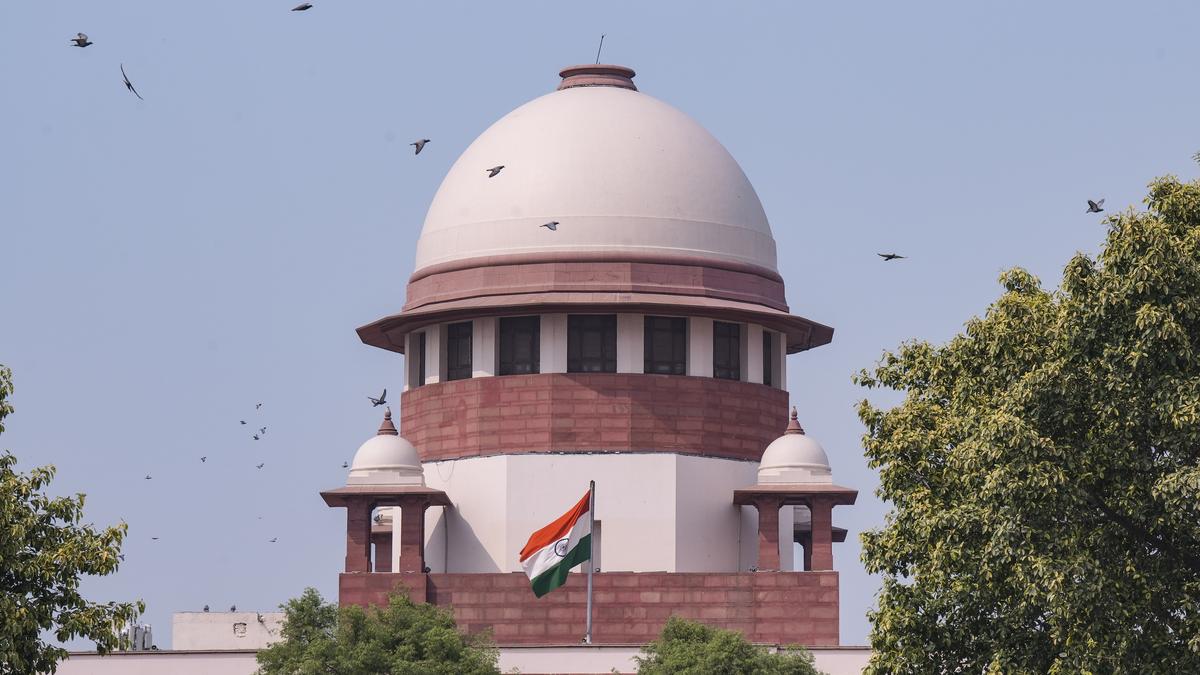
- 03 May 2025
In News:
Recently, the Supreme Court of India, in the case of Amar Jain v. Union of India &Ors., declared that inclusive digital access to e-governance and welfare systems is an integral part of the fundamental right to life and liberty under Article 21 of the Constitution. The Court issued a set of 20 binding directions to enhance the accessibility of digital services, especially the Know Your Customer (KYC) process, for persons with disabilities (PwDs) and other marginalized groups.
Background of the Case
The ruling arose from petitions filed which highlighted that digital KYC processes, which rely heavily on visual and facial inputs, were discriminatory and inaccessible to individuals with visual impairments or facial disfigurements. This impeded their access to banking, welfare schemes, and essential services.
Key Supreme Court Observations
- Digital access is part of Article 21: The right to life and liberty must now be interpreted to include meaningful digital access, particularly as governance, education, and financial services shift online.
- Constitutional mandate, not policy choice: Bridging the digital divide is not discretionary but a constitutional obligation under Articles 14, 15, 21, and 38.
- Substantive Equality: Digital services must be inclusive and equitable, particularly for:
- Persons with Disabilities (PwDs)
- Rural and remote communities
- Linguistic minorities
- Senior citizens
- Economically weaker sections
- Exclusion through technology: Digital platforms, in their current form, further alienate historically disadvantaged groups rather than empowering them.
Key Directives Issued by the Court
- Revise digital KYC norms to be PwD-inclusive.
- Reserve Bank of India (RBI) and other regulators must ensure universal accessibility.
- Mandate accessibility audits by certified professionals.
- Appoint nodal officers in each department to monitor compliance.
- Include PwDs in digital platform design processes.
- Ban discriminatory design features that rely solely on facial inputs.
Relevant Constitutional Provisions
Article Provision
Article 14 Equality before law
Article 15 Prohibition of discrimination
Article 21 Right to life and personal liberty
Article 38 Directive for securing social justice and reducing inequalities
Precedents in Digital Rights Jurisprudence
- Maneka Gandhi v. Union of India (1978): Expanded Article 21 to include fair, just, and reasonable procedures.
- Faheema Shirin v. State of Kerala (2019): First Indian case to recognize right to internet access as part of Right to Life and Right to Education (Article 21A).
- Anuradha Bhasin v. Union of India (2020): Held that freedom of speech (Article 19(1)(a)) and right to trade (Article 19(1)(g)) apply to the internet.
Barriers to Digital Empowerment of PwDs
- Digital Literacy Gap: PwDs are underrepresented in programs like PMGDISHA.
- Weak Enforcement: Accessibility mandates under the Rights of Persons with Disabilities Act, 2016 are poorly implemented.
- Limited Assistive Technology (AT): Lack of affordable tools for facially disfigured or visually impaired individuals.
- Design Exclusion: Platforms that depend on facial cues (e.g., blinking, alignment) exclude acid attack survivors and visually impaired users.
Way Forward: Recommendations for Inclusive Digital Access
- Accessible Digital Infrastructure:
- Promote screen readers, voice commands, haptic navigation, and AI-based assistive tech under Digital India.
- Adhere to Web Content Accessibility Guidelines (WCAG).
- Disability-Focused Digital Literacy:
- Collaborate with tech giants like Google/Microsoft to provide training in assistive technologies.
- Expand schemes like PMGDISHA to include PwD-specific modules.
- Disability-Sensitive Urban Planning:
- Incorporate assistive tech into Smart City projects.
- Public infrastructure should have Braille, audio, and sign language-based digital signage.
- Inclusive Innovation Lab:
- Establish Public-Private Innovation Hubs for developing affordable accessibility tech.
- Encourage startups and NGOs to co-create need-based digital solutions for PwDs.
National Security Advisory Board (NSAB)
- 03 May 2025
In News:
The Government of India has reconstituted the National Security Advisory Board (NSAB) with former R&AW chief Alok Joshi appointed as its Chairman. The move comes in the backdrop of increasing national security threats, including the recent terrorist attack in Pahalgam, which prompted a series of high-level security meetings chaired by Prime Minister Narendra Modi.
What is NSAB?
The NSAB is an advisory body functioning under the National Security Council (NSC). It offers independent, long-term strategic assessments and policy recommendations on national security issues.
- Established: December 1998, under NSA Brajesh Mishra
- Parent Body: National Security Council Secretariat (NSCS)
- Associated Bodies:
- National Information Board (NIB)
- Technology Coordination Group (TCG)
Composition of the Newly Reconstituted Board (2025)
- Chairman: Alok Joshi (Former R&AW Chief)
- New Members Include:
- Military:
- Air Marshal P.M. Sinha (ex-Western Air Commander)
- Lt Gen A.K. Singh (ex-Southern Army Commander)
- Rear Admiral Monty Khanna
- Police:
- Rajiv Ranjan Verma (Retd IPS)
- Manmohan Singh (Retd IPS)
- Diplomacy:
- B. Venkatesh Varma (Retd IFS, ex-Ambassador to Russia)
- Military:
Current NSAB Strength: 16 members, including military veterans, diplomats, academics, and civil society experts.
Functions and Objectives
- Provide non-partisan, long-term strategic inputs to the National Security Council.
- Recommend policy measures on defence, diplomacy, cyber security, and internal security.
- Assist in drafting key national security documents:
- Nuclear Doctrine (2001)
- National Security Review (2007)
- Hold monthly or emergency meetings to assess national and global threats.
- Submit independent reports to the NSA for evidence-based policy making.
- Act as a bridge between the strategic community and the government.
India’s First Certified Green Municipal Bond
- 03 May 2025
In News:
The Ghaziabad Nagar Nigam has become the first municipal body in India to issue a certified Green Municipal Bond, successfully raising ?150 crore to construct a Tertiary Sewage Treatment Plant (TSTP) — a major step toward sustainable urban water management.
What is a Green Municipal Bond?
A Green Municipal Bond is a financial instrument issued by Urban Local Bodies (ULBs) to finance projects with environmental benefits, such as:
- Renewable energy
- Water and wastewater treatment
- Pollution control
- Solid waste management
These bonds are aligned with international Green Bond Principles and require sustainability certification through independent third-party audits.
Key Features
- Targeted Use of Funds: Capital raised is exclusively allocated to environmentally certified projects.
- Independent Certification: Must meet Environmental, Social, and Governance (ESG) standards.
- Investor Confidence: Appeals to climate-focused investors, ESG funds, and global financial institutions.
- Municipal Creditworthiness: Encourages better financial management and credit ratings for ULBs.
Significance of the Initiative
- Supports SDGs: Contributes to UN Sustainable Development Goals, especially SDG 6 (Clean Water and Sanitation).
- Promotes Green Infrastructure: Enables low-emission urban development and enhances climate resilience.
- Enhances Water Security: Facilitates wastewater recycling, reducing dependence on freshwater sources.
- Replicable Model: Serves as a template for other municipalities to mobilize green capital for eco-projects.
Natural Hydrogen
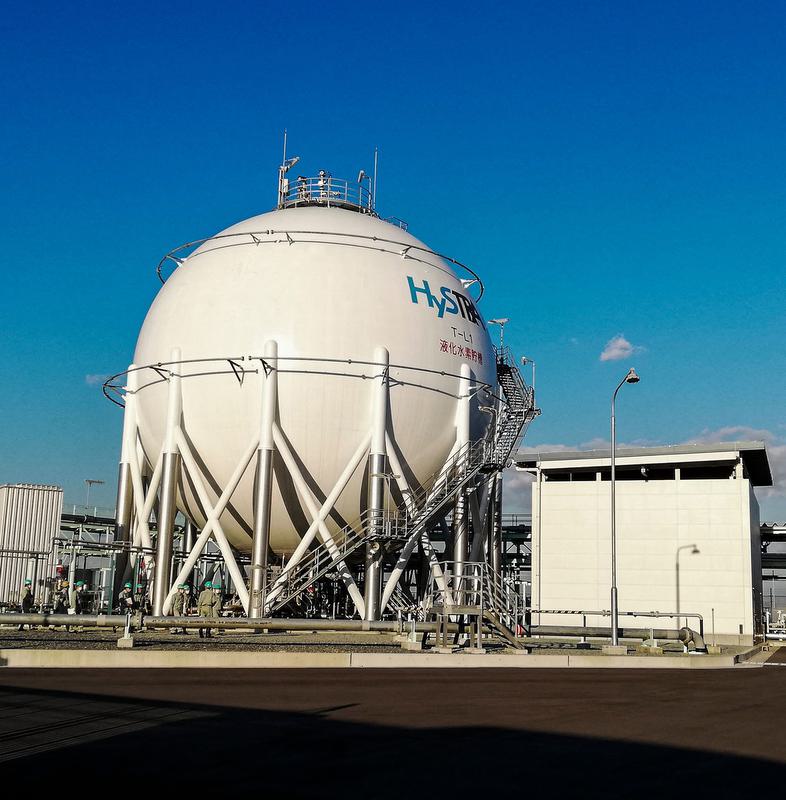
- 03 May 2025
In News:
Governments and private players globally are increasingly exploring natural hydrogen as a low-cost, zero-emission energy source. Recent discoveries in France’s Moselle region and growing interest in countries like India and the U.S. signal a new frontier in clean energy exploration.
What is Natural Hydrogen?
Natural hydrogen, or geologic hydrogen, refers to free molecular hydrogen (H?) naturally present underground due to geological processes. Unlike manufactured hydrogen (grey, blue, or green), it occurs naturally and can be extracted directly from the Earth.
Key Geological Sources:
- Serpentinisation: Water reacts with ultramafic rocks.
- Radiolysis: Water splits due to radioactive decay of rocks.
- Organic decomposition: Deep-seated carbon-rich matter releases hydrogen.
- Co-existence with helium: Indicates deep crustal origins.
Extraction Process
- Exploration: Detection of hydrogen seeps using geophysical tools.
- Drilling: Boreholes drilled in hydrogen-rich zones (e.g., Mali, U.S., France).
- Capture & Compression: Hydrogen is purified and compressed.
- Distribution: Delivered for use in fuel cells, refineries, or industries.
Why is it Important?
- Zero Emissions: Burns to produce only water vapor — no CO?.
- Cost-Effective: Estimated cost ~$1/kg, cheaper than green hydrogen.
- Renewable & Sustainable: Can replenish naturally in rock formations.
- High Efficiency: Hydrogen fuel cells are 3x more efficient than gasoline.
Historical Background
- 1987, Mali: Accidental discovery of a hydrogen-rich well during water drilling.
- 2012: Confirmed to be 98% pure hydrogen, sparking interest in natural reserves.
- Once viewed as a geological oddity, it is now recognized for its energy potential.
Global Exploration Trends
- Over 40 companies exploring hydrogen in Australia, U.S., Spain, France, Albania, Colombia, South Korea, Canada.
- USGS model (2022): Suggests potential to meet global hydrogen demand for ~200 years.
- France (2025): Moselle region found to contain ~92 million tonnes of natural hydrogen — worth ~$92 billion.
India’s Natural Hydrogen Potential
India has favourable geology for natural hydrogen generation:
- Ophiolite belts: Himalayas, Andaman.
- Cratons: Dharwar, Singhbhum greenstone belts.
- Sedimentary basins: Vindhyan, Cuddapah, Gondwana.
- Hydrothermal systems: Hot spring regions.
- Basement rocks: With deep fractures and mafic/ultramafic content.
A comprehensive geological survey is needed to assess extractable reserves.
Challenges in Adoption
- Lack of Mapping: Global hydrogen reserves are poorly explored.
- Scattered Deposits: Difficult to commercialize if reserves are dispersed.
- Storage & Transport: Requires high-pressure systems due to low density.
- Safety Risks: Odourless and flammable — hard to detect leaks.
- Infrastructure Deficit: Refuelling stations and pipelines still underdeveloped.
Way Forward
- National Hydrogen Mapping: Focus on cratonic belts and ophiolites in India.
- Policy Framework: Integrate natural hydrogen into the National Hydrogen Mission.
- Public-Private Collaboration: Offer PPPs, tax breaks, and R&D incentives.
- Global Partnerships: Collaborate with USGS, France, U.S. on exploration models.
- Infrastructure Investment: Build hydrogen hubs, refuelling stations, and pipelines.
Caste Census in India
- 03 May 2025
In News:
The Cabinet Committee on Political Affairs (CCPA) has recently approved the inclusion of caste enumeration in the forthcoming national Population Census. This marks a significant policy shift from its 2021 position, where the idea was set aside.
Understanding the Caste Census
A caste census involves the systematic recording of individuals' caste affiliations during a national population count. This exercise aims to generate detailed socio-economic profiles of various caste groups, facilitating better policy planning, especially in the context of welfare schemes and affirmative action.
Legal and Constitutional Framework
- No Direct Provision: The Constitution does not expressly mandate a caste census.
- Permissibility Under Article 340: The government is empowered to investigate the conditions of socially and educationally backward classes, which provides scope for caste-based data collection.
- Union Subject: As per Entry 69 of the Union List (Seventh Schedule), the Census falls within the legislative jurisdiction of the Union Government under Article 246.
Historical Context
- Colonial Era (1881–1931): The British administration included caste enumeration in decennial censuses, the last being in 1931.
- Post-Independence Practice (1951 onwards): Independent India has only counted Scheduled Castes (SCs) and Scheduled Tribes (STs) in its censuses.
- Socio-Economic and Caste Census (SECC) 2011: Though it aimed to gather caste-related data, the caste-specific findings remain unpublished due to concerns over accuracy.
Why a Caste Census is Relevant Today
- Evidence-Based Policy Making:Reliable data on Other Backward Classes (OBCs) is absent. For example, the Mandal Commission (1980) estimated OBCs at 52%, but this figure lacks empirical validation. Recent data from Bihar's 2023 caste survey pegged the OBC+EBC population at 63%.
- Restructuring Reservation:A caste census can guide rationalisation of quotas and potential sub-categorisation within OBCs, ensuring benefits reach the most deprived segments.
- Social Welfare Targeting:Caste-disaggregated data allows for focused delivery of healthcare, education, and livelihood schemes.
- Women’s Political Representation:Accurate population data is necessary for delimitation, a precursor to implementing the recently passed Women’s Reservation Act, which reserves seats for women in legislatures.
- Constitutional Backing:Article 15(4) enables the state to provide for the advancement of backward classes, but this requires reliable data for identification.
AIM4NatuRe
- 02 May 2025
In News:
On Earth Day 2025 (April 22), the Food and Agriculture Organization (FAO) of the United Nations launched the AIM4NatuRe (Accelerating Innovative Monitoring for Nature Restoration) initiative with funding from the United Kingdom (GBP 7 million / USD 9.38 million).
Key Highlights:
- The programme aims to enhance countries’ capacities to monitor and report ecosystem restoration as part of the Kunming-Montreal Global Biodiversity Framework (GBF).
- Objective: To support Target 2 of the Global Biodiversity Framework:Restore at least 30% of degraded ecosystems globally by 2030.
- Key Features
- Lead Agency: FAO (United Nations)
- Funding:
- GBP 7 million from the UK (approx. USD 9.38 million)
- Project duration: 2025–2028
- Scope of Restoration:
- Forests
- Wetlands
- Grasslands
- Marine ecosystems
- Degraded agricultural lands
- Technology Integration:
- Uses satellite tools, data analysis, and advanced monitoring systems
- Promotes standardized data formats and data interoperability
- Monitoring Support Tools:
- Introduces the Framework for Ecosystem Restoration Monitoring (FERM)
- Provides technical guidance and capacity development training
- Inclusivity & Indigenous Participation:
- Pilot projects in Brazil and Peru
- Supports Indigenous Peoples in biocentric monitoring — respecting traditional knowledge and holistic ecosystem restoration
Why It Matters
- Global Restoration Commitments: Nearly 1 billion hectares pledged for restoration
- Transparency & Accountability:
- Creation of a harmonized global dataset
- Public tracking of progress toward restoration goals
- Bridging Gaps:
- Responds to 80% of countries reporting lack of monitoring capacity (CBD survey)
- Provides tools and training for effective implementation and reporting
- Broader Goals:
- Tackles climate change, biodiversity loss, and land degradation
- Enhances food security and livelihoods
India moves to curb GM Alfalfa Seed imports amid US push for market access
- 02 May 2025
In News:
India is preparing to restrict the import of genetically modified (GM) alfalfa (lucerne) seeds, even as the United States urges a reduction in import duties on the crop. Alfalfa is a high-protein forage crop widely used for animal feed.
Key Highlights
- Alfalfa (Lucerne):
- Botanical Name: Medicago sativa
- Origin of Name: From Arabic al-fasfasa, meaning "the best forage"
- Nutritional Profile: Rich in vitamins A, C, K, B-complex, minerals (calcium, potassium, magnesium), proteins, fiber, and antioxidants
- Uses: Primarily as fodder, also consumed by humans for its health benefits
- Agricultural Benefit: Being a leguminous crop, it helps in nitrogen fixation
India’s Regulatory Stand
- The government plans to bar GM alfalfa seed imports under powers granted by the Environment (Protection) Act, 1986.
- A rapid detection kit may be developed by Indian scientists to identify GM seeds before unloading at ports.
- Phytosanitary Certification: All imported alfalfa seeds must be accompanied by valid certificates meeting India’s plant protection standards.
Current Import Policy & Tariffs
- HS Code: 12092100 (Lucerne seed for sowing)
- Effective Import Duty: 50.045%, broken down as:
- 30% Basic Customs Duty (BCD)
- 30% AIDC (Agri Infrastructure and Development Cess) on BCD
- 10% Social Welfare Surcharge on (BCD + AIDC)
- 5% IGST
- Import Status: Currently, India does not import alfalfa seeds due to high domestic availability and high import duty.
- Domestic Price: ?500–800/kg; imported seeds would cost more.
Other Forage Imports
- Berseem (Trifolium spp.): India imports mainly from Egypt and CIS countries
- Import Drop: From 5,776 tonnes (2023-24) to 618 tonnes (April 2024–Jan 2025) due to increased domestic production
Environmental and Agricultural Considerations
- Water Requirement: Alfalfa is water-intensive, making seed cultivation less viable in water-scarce regions.
- Alternative Option: Experts suggest importing direct alfalfa fodder instead of seeds to meet demand while conserving water and preserving agricultural land for oilseeds and pulses.
Global Context
- USA:
- World’s largest alfalfa producer
- Grows both GM and non-GM varieties
- Alfalfa is mostly grown under rainfed conditions, with lower yield compared to irrigated regions
Amazon’s Project Kuiper

- 02 May 2025
In News:
Amazon successfully launched the first 27 satellites of Project Kuiper aboard an Atlas V rocket from Cape Canaveral Space Force Station, Florida. This marks the beginning of a large-scale effort to deploy a global satellite internet network to compete with SpaceX’s Starlink.
What is Project Kuiper?
Project Kuiper is Amazon’s satellite-based broadband project aimed at delivering high-speed internet across the globe, especially in underserved and remote regions, using Low Earth Orbit (LEO) satellites.
- Implementing Agency: Amazon
- FCC License: Approved in July 2020 by the US Federal Communications Commission
- Launch Name: KA-01 (Kuiper Atlas 1)
- Total Satellites Planned: 3,232 satellites in LEO (~630 km altitude)
- Current Launch: 27 satellites deployed; over 80 launches are planned to build the full constellation.
Objectives
- Provide affordable, high-speed internet to users across the globe.
- Support education, healthcare, disaster response, rural connectivity, and government services.
- Serve sectors requiring resilient communications in low-connectivity areas.
Internet Speed Tiers
Terminal Type Speed
Compact (Home Use) Up to 100 Mbps
Standard (Schools/Hospitals) Up to 400 Mbps
Large (Govt/Enterprise) Up to 1 Gbps
Comparison with Starlink and Other Satellite Internet Systems
Network Organisation Satellites Planned Current Status
Starlink SpaceX 40,000+ ~7,200 operational satellites; 5M+ users
OneWeb UK/India 648 Hundreds in orbit
Telesat Lightspeed Canada 298 In development
Guowang China 13,000+ Under planning
Project Kuiper Amazon 3,232 First 27 launched (May 2025)
How Satellite Internet Works
- Constellation: A network of satellites working in coordination to provide continuous global coverage.
- LEO Orbit: Satellites operate between 500–2,000 km altitude, offering low latency (20–40 ms).
- Ground Stations: Transmit and receive data to and from satellites.
- Inter-satellite Links: Use lasers/radio waves to relay data between satellites.
- AI-based Routing: Manages network traffic and reduces lag.
Technical Features
- Frequency Bands Used:
- Ka-band: High speed, weather-sensitive
- Ku-band: Balanced speed and reliability
- C-band: Slower, good in poor weather
- V-band: Experimental, ultra-fast but obstructed easily
- ACM Technology: Adjusts signal strength dynamically during adverse weather conditions.
Challenges
- High Cost: Satellite launches and user equipment are expensive.
- Weather Sensitivity: Rain and storms disrupt signals, especially in Ka/V bands.
- Space Debris Risk: Dense constellations increase chances of satellite collisions.
- Astronomical Interference: Bright satellite trails obstruct telescopic observations.
Strategic and Commercial Implications
- Project Kuiper marks Amazon’s entry into a growing space-based internet economy, competing with SpaceX’s Starlink.
- Expected to play a commercial and strategic role, including possible defence applications.
- With over 80 launches planned, Amazon will use various launch providers including ULA, Arianespace, Blue Origin, and SpaceX.
Red-Crowned Roofed Turtle
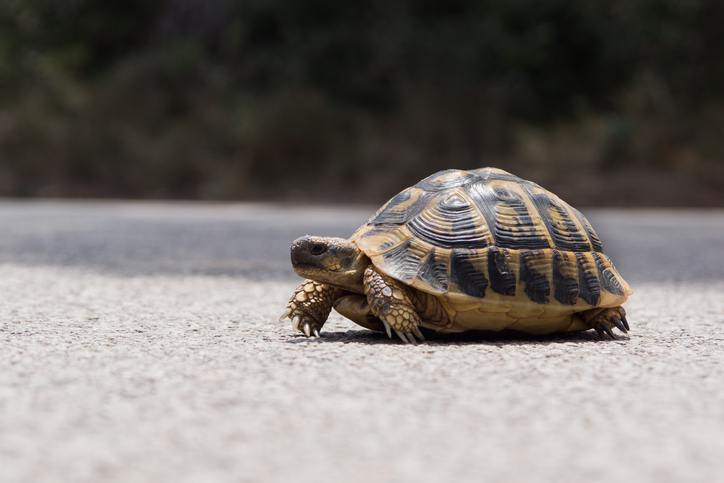
- 02 May 2025
In News:
After nearly 30 years of absence, the Red-Crowned Roofed Turtle (Batagurkachuga) has been rediscovered in the Ganga River — a significant success for conservation efforts aimed at reviving endangered freshwater species.
Overview
- Commonly known as the Bengal Roof Turtle, it is a rare species of freshwater turtle found only in South Asia.
- Scientific Name: Batagurkachuga
Geographical Distribution
- Native Range: India, Nepal, and Bangladesh.
- Historical Presence: Widely distributed across the Ganga River system in India and Bangladesh, with additional presence in the Brahmaputra River basin.
- Current Habitat in India: The most viable population is now confined to the National Chambal Sanctuary, a protected riverine stretch for species like gharials and turtles.
Distinctive Features
- Size: Medium-sized species, females can grow up to 56 cm in length and weigh up to 25 kg, while males are significantly smaller.
- Coloration: Notable for their reddish-orange head marked with a black crown, and a greenish-brown carapace patterned with yellow streaks.
- Plastron (under-shell): Yellow with distinctive black markings.
- Adaptations: Possess a broad head, strong jaws, and webbed feet, suited for an aquatic lifestyle.
- Diet: Omnivorous — consumes both plant material and small aquatic organisms.
Conservation Status
- IUCN Red List: Critically Endangered
- Wildlife (Protection) Act, 1972: Listed under Schedule I – providing the highest level of legal protection in India.
- CITES: Included in Appendix II, regulating international trade.
International Labour Day (May Day)
- 02 May 2025
In News:
International Labour Day, also known as May Day, is observed annually on May 1 to honor the dedication and contributions of workers across the globe.
Key Highlights:
- Observed On: May 1
- Also Known As: International Workers’ Day, May Day
- Purpose: To commemorate the contributions of workers and honor the global labor movement's struggles and achievements.
Historical Background
- Origin: The roots of International Labour Day trace back to Chicago, USA, where on May 1, 1886, workers launched a strike demanding an 8-hour workday.
- The protest culminated in the Haymarket Affair on May 4, 1886, when a bomb explosion led to the deaths of six police officers and several civilians, marking a major milestone in labor rights activism.
- In 1889, the Second International (Paris) declared May 1 as a day of international workers’ solidarity.
Global Observance
- Observed in over 160 countries, including India, China, Cuba, France, Germany, Brazil, South Africa, Russia, Vietnam, among others.
- Celebrated through parades, union meetings, and public demonstrations advocating workers’ rights and social justice.
Country-wise Observance Differences
- India: First observed in 1923 in Chennai by the LabourKisan Party of Hindustan. It is a public holiday, widely recognized across the country.
- United States: Despite its historical origin, the U.S. celebrates Labor Day on the first Monday of September, officially declared in 1894 after the Pullman Strike. The shift was made to distance the holiday from socialist and communist affiliations.
- Canada: Also celebrates Labor Day on the first Monday of September, following U.S. traditions, though May 1 has some informal recognition by trade unions.
- United Kingdom: Celebrates a related holiday called the Early May Bank Holiday on the first Monday of May, which may or may not fall on May 1. It is not explicitly labor-themed like in other countries.
Significance
- Serves as a global reminder of workers’ rights, the historical fight for humane working conditions, and the ongoing struggles of labor communities.
- Symbolizes solidarity among workers across nations, cutting across political ideologies and economic systems.
WAVES 2025 & WAM!
- 01 May 2025
In News:
In line with the vision of “Create in India, Create for the World,” the Ministry of Information & Broadcasting, in partnership with the Media & Entertainment Association of India (MEAI), is hosting WAVES 2025—India’s largest summit for the Media & Entertainment (M&E) sector. A major highlight of this summit is the WAM! (WAVES Anime & Manga Contest)—India’s first national initiative to promote original Indian IPs in anime, manga, webtoons, and cosplay.
What is WAM!?
- Full Form: WAVES Anime & Manga Contest.
- Nature: India’s first national initiative focused on discovering and nurturing original Indian creative intellectual properties (IPs) in:Anime, Manga, Webtoons&Cosplay
- Organisers: Ministry of Information & Broadcasting, in collaboration with MEAI.
- Finale: To be held at WAVES 2025, from May 1–4, 2025, at the Jio World Convention Centre, Mumbai.
- Participants: Finalists from 11 cities selected through regional contests.
Global Support & Incentives
- Crunchyroll, a global anime platform (a joint venture of Sony Pictures Entertainment and Aniplex, Japan), is the Title Sponsor of WAM! 2025.
- It has introduced a Creator Development Grant to support Indian talent and foster global-ready original content.
Grant Details
Category Student (INR) Professional (INR)
Manga 25,000 25,000
Webtoon 25,000 25,000
Anime 50,000 50,000
- Winners of WAM! 2025 will represent India at Anime Japan 2026 in Tokyo—one of the world's leading anime conventions—marking India’s presence on the global animation stage.
About WAVES 2025
- Full Form: World Audio-Visual & Entertainment Summit.
- Objective: Showcase India's capabilities in content creation, technological innovation, and media & entertainment IP development.
- Hosted by: Government of India.
- Venue: Jio World Convention Centre, Mumbai
Key Pillars of WAVES 2025
- AVGC-XR Sector Focus:Animation, Visual Effects, Gaming, Comics&Extended Reality (XR) including AR, VR, and Mixed Reality.
- "Create in India" Challenges (CIC):
- Season 1 witnessed over 1 lakh registrations, including 1,100 international participants.
- 750+ finalists selected through 32 unique creative challenges.
- Thematic Focus Areas:
- Broadcasting, Films, Television, Radio
- Print & Digital Media, Advertising, Social Media Platforms
- Sound & Music
- Generative AI, Augmented Reality (AR), Virtual Reality (VR), Extended Reality (XR)
- Target Audience: Content creators, industry professionals, investors, technology innovators, and global studios.
Urban Heat Island (UHI) Effect
- 01 May 2025
In News:
With accelerating urbanization and climate change, the Urban Heat Island (UHI) phenomenon has emerged as a significant public health and environmental concern. Recent studies, including one published in Nature Climate Change, highlight that while UHIs elevate heat-related mortality, they simultaneously reduce cold-related deaths, especially in colder regions. This dual impact has major implications for urban planning and climate adaptation strategies.
What is Urban Heat Island (UHI)?
- Definition: UHI refers to the phenomenon where urban areas experience higher temperatures than surrounding rural regions due to human activities and urban infrastructure.
- Cities Affected: Notable examples include New Delhi, Moscow, New York, Paris, and London, where dense infrastructure and limited vegetation intensify urban heat.
Key Causes of UHI
- Impervious Surfaces: Materials like asphalt and concrete absorb heat during the day and release it slowly at night due to low albedo.
- Lack of Vegetation: Reduced greenery limits evapotranspiration, curbing natural cooling.
- Anthropogenic Heat: Heat from vehicles, air conditioners, and industries raises ambient temperatures.
- Air Pollution: Black carbon and particulates absorb solar radiation, compounding heat effects.
- Urban Morphology: Dense construction and narrow streets create a canyon effect, trapping heat and reducing airflow.
Dual Impact on Mortality
A 2025 study led by Dr. Wenfeng Zhan analyzed temperature-related mortality across 3,000+ cities globally using remote sensing and socioeconomic data:
- Cold-related Deaths Reduced: In 2018, the decline in cold-related fatalities was 4.4 times higher than the rise in heat-related deaths due to UHI.
- High-Latitude Cities: In cities like Moscow, cold-related deaths decreased 11.5 times more than heat-related deaths increased.
- Key Insight: The UHI effect's net mortality impact can vary significantly by region and season.
Consequences of UHI
- Increased Energy Demand: Higher temperatures raise demand for air conditioning, increasing fossil fuel use and emissions.
- Health Risks: Elevated risks of heat stroke, dehydration, and cardiovascular stress, especially among the elderly and urban poor.
- Deterioration of Air Quality: Heat-induced formation of ground-level ozone exacerbates respiratory ailments.
- Water Stress: Faster evaporation and increased demand for cooling water pressure urban water resources.
- Biodiversity Decline: Excessive heat and lack of green spaces threaten urban flora and fauna.
Mitigation Strategies
- Cool Roofs (Los Angeles):Mandates reflective roofing in new buildings and renovations to reduce heat absorption.
- Smart Cooling Systems (Dubai):Centralized chilled water systems reduce cooling energy by 30–50% compared to individual AC units.
- Cool Streets Initiative (Paris):Converts streets to pedestrian zones, replaces asphalt with vegetation, and expands urban greenery.
India and the USTR Special 301 Report
- 01 May 2025
In News:
India has once again been placed on the Priority Watch List(PWL) in the United States Trade Representative (USTR) Special 301 Report, alongside countries such as China, Russia, and Venezuela. The report has raised concerns over India's Intellectual Property Rights (IPR) regime, prompting debates on the implications for India's trade and innovation environment.
What is the USTR Special 301 Report?
- Mandate & Purpose: The Special 301 Report is an annual review mandated under Section 182 of the US Trade Act of 1974, identifying countries that the US believes do not offer "adequate and effective" protection of IPR or deny fair and equitable market access to US IPR holders.
- Designations:
- Priority Foreign Country (PFC): Most severe classification; can trigger investigations and trade sanctions.
- Priority Watch List (PWL): Countries with serious IPR concerns requiring close monitoring and bilateral engagement.
- Watch List: Countries with moderate IPR issues.
- Historical Context: India has been consistently listed under the Priority Watch List in the report, including in the years 2020, 2021, and 2024.
Concerns Raised by the USTR Regarding India
- IP Enforcement Deficiencies:
- Weak enforcement mechanisms against online piracy.
- Backlogs in trademark opposition proceedings.
- Lack of a strong legal framework for protecting trade secrets.
- Pharmaceutical Patents:
- Alleged lack of transparency and delays in resolving pre-grant patent disputes.
- Absence of effective mechanisms for early resolution of disputes in the pharmaceutical sector.
- Copyright Issues:The report criticizes India for not fully aligning with WIPO Internet Treaties, especially regarding the protection of content in interactive transmissions like streaming and downloads.
- Market Access Concerns:The US claims that India imposes high tariffs on IP-intensive products and creates procedural barriers for foreign firms seeking patent protection.
India’s Response and Position
- India maintains that its IPR laws fully comply with the WTO’s TRIPS Agreement, which sets minimum standards for IP protection globally.
- India rejects unilateral pressure to conform to IP standards beyond TRIPS, asserting its right to balance IP protection with public health, access to medicines, and developmental needs.
- Progress has been acknowledged in areas like trademark investigation reforms and IP policy transparency through bilateral platforms such as the US-India Trade Policy Forum.
US Measures to Push IPR Standards
- The USTR uses a mix of bilateral negotiations, WTO forums, and technical assistance to persuade countries to adopt stricter IP regimes.
- It also undertakes anti-counterfeiting initiatives, capacity-building programs, and trade diplomacy to influence global IPR enforcement.
India's Arbitration Ecosystem

- 01 May 2025
In News:
India's growing stature as a global economic powerhouse has led to an upsurge in commercial transactions—both domestic and international. With the traditional litigation system overburdened (nearly 50 lakh cases pending for over 10 years), arbitration is increasingly viewed as a faster and more efficient alternative for dispute resolution. However, despite legislative reforms, the effectiveness of India’s arbitration landscape remains hindered by structural flaws, especially concerning arbitrator quality and institutional credibility.
What is Arbitration?
Arbitration is a quasi-judicial mechanism of Alternative Dispute Resolution (ADR) wherein a neutral third party (arbitrator) delivers a binding decision outside the court system. It is governed by the Arbitration and Conciliation Act, 1996, which aligns with the UNCITRAL Model Law. Amendments in 2015, 2019, and the draft Bill of 2024 aim to promote institutional arbitration, reduce delays, and enhance credibility.
Historical and Institutional Evolution
- 1899: Indian Arbitration Act introduced (limited to Presidency towns).
- 1940: Comprehensive domestic arbitration law enacted.
- 1996: Post-liberalization, India adopted UNCITRAL-compliant Arbitration and Conciliation Act.
- 2019: Establishment of India International Arbitration Centre (IIAC) to offer cost-effective and globally competitive arbitration services.
- Arbitration Council of India (ACI): Set up under 2019 Amendment to regulate and promote quality arbitration, headed by a retired SC/HC judge or expert.
Why Arbitration is Gaining Importance in India
- Judicial Backlog: With only 21 judges per million people, courts are overwhelmed. Arbitration offers a time-bound alternative (mandated 12-month timeline for award delivery).
- Economic Growth and FDI Surge: India attracted $1 trillion in FDI (2024), heightening cross-border disputes that demand specialized, swift dispute resolution.
- Confidentiality and Expertise: Arbitration provides procedural flexibility and protects sensitive commercial data—key for tech, pharma, and IP-driven sectors.
- Global Recognition: India is a signatory to the New York Convention, making its arbitral awards globally enforceable.
- Policy Push: Civil Procedure Code and National Litigation Policy (2010) encourage ADR to reduce court burden.
Core Challenges in India’s Arbitration Framework
- Judicial Dominance in Arbitrator Appointments:
- Retired judges dominate arbitration panels.
- Their court-centric mindset leads to lengthy, costly, and rigid processes, often mimicking litigation.
- The Ministry of Finance (2024) criticized these arbitrations as lacking efficiency and innovation.
- Narrow Arbitrator Pool:
- Predominantly comprises legal professionals and ex-judges.
- Lacks subject-matter experts like engineers, economists, and technologists, crucial for technical or industry-specific disputes.
- Insufficient Training and Accreditation:
- No mandatory certification or capacity-building for arbitrators.
- Skills like cross-cultural communication, financial analysis, and evidence handling are often underdeveloped.
- Low Global Representation:
- Indian arbitrators are rarely appointed in international disputes without an Indian party.
- As highlighted by former CJI D.Y. Chandrachud (2024), this points to gaps in credibility, visibility, and networking.
Reforms Needed to Build a Robust Arbitration Ecosystem
- Diversify and Professionalize Arbitrator Pool:
- Move beyond reliance on retired judges.
- Include professionals from fields like law, finance, engineering, and management.
- Accreditation and Skill Development:
- Establish a National Accreditation Board for Arbitrators under the Ministry of Law and Justice.
- Mandate rigorous training via institutions like IIAC or professional bodies.
- Encourage soft-skills and exposure to global best practices.
- Institutional Strengthening:
- Boost the functioning of IIAC and ACI for better standards, accountability, and case management.
- Promote institutional arbitration over ad hoc arbitration.
- Awareness and Capacity Building:
- Launch a National Arbitration Awareness Mission targeting MSMEs and Tier-2/3 cities.
- Integrate with existing platforms like Startup India, Skill India, and MSME Sambandh.
- Limit Judicial Interference:
- Strict adherence to the “minimum judicial intervention” principle (as per the 1996 Act).
- Establish dedicated commercial courts with arbitration-specialist judges for related matters.
- International Engagement and Visibility:
- Partner with global arbitral institutions (e.g., SIAC, ICC).
- Organize International Arbitration Summits to showcase Indian capabilities.
- Use forums like UN, IBA, and G20 to promote Indian arbitrators globally.
Brain-Computer Interface (BCI) Breakthrough
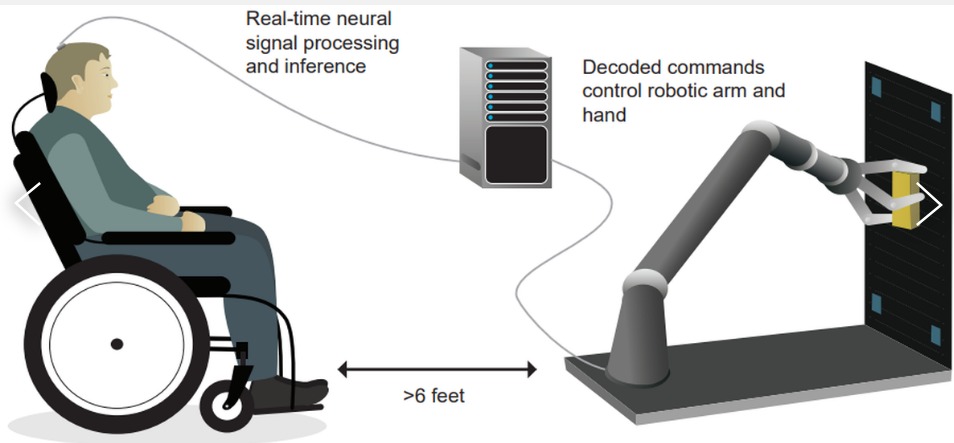
- 01 May 2025
In News:
In a pioneering advancement in neurotechnology and assistive healthcare, scientists at the University of California, San Francisco (UCSF)have developed a stable Brain-Computer Interface (BCI) system that enables a paralysed individual to control a robotic arm using only brain signals. This innovation holds transformative potential for people with paralysis, significantly enhancing autonomy and quality of life.
What is Brain-Computer Interface (BCI)?
A Brain-Computer Interface (BCI) is a neurotechnological system that establishes direct communication between the brain and external devices, bypassing damaged neural pathways. It decodes neural signals related to intended movements and translates them into actionable commands to control robotic limbs, computers, or speech systems.
Key Technological Achievements
- Long-Term Stability: The developed BCI system allowed continuous and accurate control of a robotic arm for over 7 months with minimal recalibration, overcoming a major limitation of earlier BCI systems.
- Sensor Implantation: Tiny electrodes were implanted in the motor cortex, the region of the brain that governs movement.
- AI-Powered Signal Decoding: The system used machine learning algorithms to decode brain activity and adapt to daily shifts in neural signals, ensuring consistent performance.
- Virtual to Real Transition: The participant underwent virtual training with a robotic arm before controlling a real-world robotic limb, aiding in precision and neural calibration.
Functionality Demonstrated
The paralysed participant, who had lost all movement and speech abilities due to a stroke, could:
- Pick up and rotate blocks
- Open cabinets
- Retrieve and position a cup under a water dispenser
These basic actions, enabled purely by imagined movement, highlight the immense real-world utility of the BCI system.
Scientific Insights
- High-Dimensional Neural Mapping: Although neural signals shifted slightly each day, their overall structure remained consistent. This allowed researchers to create a dynamic AI framework that predicted and compensated for signal changes.
- No Direct Brain Stimulation: The system only read signals and did not send any electrical impulses to the brain.
- End-to-End Signal Processing Pipeline: From capturing brain signals to executing robotic arm movement, a seamless pipeline was established for fluid, real-time motion.
Broader Applications
The implications of this BCI research go beyond limb movement:
- Restoration of Speech: In cases of ALS (Amyotrophic Lateral Sclerosis) and brainstem stroke, BCIs can decode intended speech from neural activity and render it as text, synthesized voice, or avatar speech.
- Faster Communication: A recent trial showed an ALS patient using BCI technology to communicate at 62 words per minute, nearly 3.4 times faster than earlier systems.
Future Prospects & Challenges
- Scalability: More work is needed to generalize this system for diverse forms of paralysis.
- Complex Environments: Future BCIs must function in real-world environments filled with distractions, like grocery stores or public spaces.
- Ethical and Regulatory Oversight: Given the invasive nature of electrode implantation, ethical considerations around consent, privacy, and long-term effects must be addressed.
Nag Anti-Tank Missile System (NAMIS)
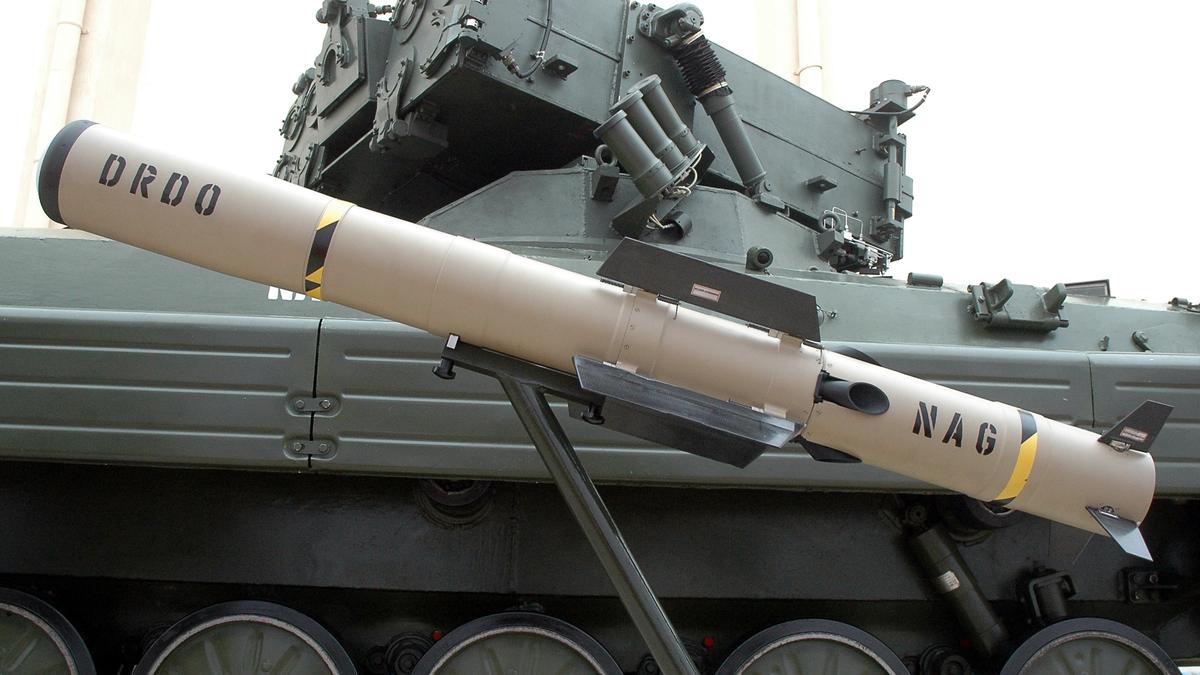
- 31 Mar 2025
In News:
The Ministry of Defence (MoD) signed contracts worth approximately ?2,500 crore for procuring advanced anti-tank missile systems and light vehicles to enhance the Indian Army's operational capabilities.
Nag Anti-Tank Missile System (NAMIS)
- Development and Production:Developed by the Defence Research and Development Laboratory (DRDL) under the Defence Research and Development Organisation (DRDO) and produced by Bharat Dynamics Limited (BDL).
- System Overview:NAMIS is a tracked, third-generation anti-tank guided missile (ATGM) system mounted on a BMP-2 chassis (Nag Missile Carrier or NAMICA). It features a ‘fire-and-forget’ capability, employing an Imaging Infrared (IIR) seeker to lock on to heavily armored targets before launch.
- Key Features:
- Range: 500 meters to 4 kilometers.
- Attack Modes:
- Top Attack Mode: Missile climbs and strikes the target from above to penetrate weaker top armor.
- Direct Attack Mode: Missile flies directly to strike the target.
- Night Capability: Operates effectively under low visibility.
- Mobility: Based on the amphibious BMP-2, NAMIS can operate across varied terrains.
- Significance:The tracked NAMIS enhances the anti-tank capabilities of mechanized infantry, marking a crucial step in modernizing the Indian Army’s battlefield readiness.
- Other Nag Variants:The Helina is a helicopter-launched version designed for deployment on Rudra and Light Combat Helicopters (LCH), successfully tested in 2018.
Light Vehicles Procurement
- The MoD signed contracts with Force Motors Limited and Mahindra & Mahindra Limited for around 5,000 light vehicles.
- These vehicles are equipped with enhanced engine power and designed to carry payloads of up to 800 kg, ensuring mobility across diverse terrains and operational conditions.
Additional Defence Contract
- Zen Technologies Limited secured a contract worth approximately ?152 crore for supplying Integrated Air Defence Combat Simulators (IADCS) for the Army’s L70 air defence guns.
- The IADCS is a virtual training system developed under the Make-II category to provide realistic simulation-based training for air defence operations.
CAG and BISAG-N collaborate to enhance auditing through advanced Geo-spatial Technologies

- 31 Mar 2025
In News:
The Comptroller and Auditor General (CAG) of India has entered into a significant partnership with the Bhaskaracharya National Institute for Space Applications and Geo-informatics (BISAG-N) to leverage advanced technologies in geographic information systems (GIS), remote sensing, and satellite image analytics for strengthening audit processes.
About BISAG-N
- Institution Profile: BISAG-N is an autonomous scientific society under the Ministry of Electronics & Information Technology (MeitY), Government of India, located in Gandhinagar, Gujarat. It operates under the Societies Registration Act, 1860.
- Core Domains: The institute specializes in satellite communication, geo-informatics, and geo-spatial technologies.
- Functions: BISAG-N develops and manages GIS databases, creates and updates maps, conducts data migration and format translation, provides software customization and systems integration, and offers technical consulting for large-scale GIS implementations.
- Applications: It delivers comprehensive geo-spatial solutions including photogrammetry, cartography, remote sensing applications for agriculture (crop monitoring), watershed management, forest fire mapping, and environmental resource management.
- Collaborations: BISAG-N works closely with central ministries and state government agencies to support planning and development activities using space and geo-spatial technologies.
Details of the CAG-BISAG-N Partnership
- Objective: The partnership aims to integrate cutting-edge geo-spatial tools such as Artificial Intelligence (AI), Machine Learning (ML), and Big Data Analytics into the CAG's audit methodologies. This will enhance audit accuracy, efficiency, and accountability.
- Key Focus Areas:
- Developing customized geo-spatial solutions and platforms for audit analysis.
- Utilizing data available from government initiatives like PM GatiShakti for comprehensive audit evaluations.
- Conducting joint research in geo-spatial analysis, remote sensing, and satellite image analytics.
- Organizing training and capacity-building programs to equip CAG officials with skills in geo-spatial technologies.
- Significance: This collaboration reflects the CAG’s commitment to adopting digital public infrastructure and technological innovation, enhancing governance, and reinforcing financial accountability in India’s public institutions.
Gaia Space Observatory
- 31 Mar 2025
In News:
The European Space Agency (ESA) has officially retired its Gaia space observatory after over nine years of pioneering work in astrometry. Launched in December 2013, Gaia was designed to create the most detailed three-dimensional map of the Milky Way galaxy, transforming our understanding of its structure, evolution, and constituents.
About Gaia
- Mission Objective: Gaia aimed to precisely measure the positions, distances, motions, and physical properties of over 2 billion stars within the Milky Way. Its data helps scientists study the galaxy’s formation, predict its future evolution, and explore celestial phenomena.
- Orbit & Technology: Stationed at the second Lagrange point (L2), about 1.5 million kilometers from Earth, Gaia operated beyond the disturbances of Earth’s atmosphere, sun, and moon. Equipped with twin telescopes focusing light onto a nearly one-billion-pixel digital camera—the largest ever deployed in space—the observatory had three key instruments: an astrometer, photometer, and spectrometer to measure stellar positions, brightness, and compositions.
Major Contributions and Discoveries
- 3D Galactic Map: Gaia revealed the warped and wobbling nature of the Milky Way’s disc, mapped its spiral arms and central bulge, and detailed its dynamic evolution shaped by ancient galactic collisions. These findings shed light on events influencing the formation of stars including our Sun.
- New Black Holes: The mission identified previously unseen black holes detectable only by their gravitational influence, marking a first in astronomical observations.
- Asteroid Cataloguing: Gaia tracked the paths of over 150,000 asteroids, enabling better prediction of their trajectories and potential threats to Earth.
- Legacy and Data: Although Gaia has mapped approximately 2% of the galaxy’s stars so far, its extensive data sets continue to be processed and released, promising decades of future scientific breakthroughs.
End of Mission and Legacy
In March 2025, ESA safely deactivated Gaia by draining its energy and shifting it to a retirement orbit around the Sun, ensuring it does not interfere with upcoming missions. While the spacecraft’s active observations have ended, Gaia’s rich data legacy remains invaluable to astronomers worldwide.
Sahkar Taxi

- 31 Mar 2025
In News:
The government has announced the upcoming introduction of ‘Sahkar Taxi’, a cooperative-based ride-hailing platform designed to directly benefit drivers by eliminating intermediary commissions.
What is ‘Sahkar Taxi’?
‘Sahkar Taxi’ is a ride-hailing service supported by the government, operated through cooperative societies. Unlike conventional app-based services such as Ola and Uber, this platform allows drivers to retain their full earnings, without deductions by middlemen or aggregators. It draws inspiration from existing app-based models but is fundamentally driven by cooperative principles.
Why is ‘Sahkar Taxi’ Needed?
- Concerns Over Commission Charges: Leading ride-hailing apps have faced criticism for imposing high commission fees, reducing the take-home earnings of drivers.
- Pricing Transparency Issues: Allegations of differential pricing based on the type of user device (e.g., iPhone versus Android) have sparked doubts regarding fairness and transparency.
- Driver Challenges: Centralized control by large platforms often leaves drivers with limited negotiation power and inadequate income security.
Importance and Impact of ‘Sahkar Taxi’
- Driver Empowerment: By establishing a cooperative ownership model, drivers gain a stronger stake in the business, leading to improved financial stability.
- Decentralized Economic Participation: The initiative encourages local involvement and collective growth, aligning with the government’s vision of ‘Sahkar Se Samriddhi’ (Prosperity through Cooperation).
- Sustainable Alternative: It presents a viable, inclusive option to the dominant profit-driven ride aggregator market, focusing on equitable benefit sharing.
- Enhanced Consumer Confidence: The cooperative framework promotes transparent pricing and greater accountability in digital service delivery, fostering trust among users.
National Technical Textiles Mission
- 31 Mar 2025
In News:
India’s textile sector plays a vital role in the country’s economy, contributing nearly 2% to GDP and ranking as the world’s 6th largest textile exporter with a 3.9% share of global textile exports. The sector is projected to grow to USD 350 billion by 2030, generating around 3.5 crore jobs. Alongside traditional textiles, technical textiles—specialized fabrics designed for specific industrial and functional uses—are emerging as a major growth driver.
What are Technical Textiles?
Technical textiles are fabrics engineered for performance rather than aesthetics. They serve diverse sectors such as agriculture, healthcare, construction, automotive, and safety by providing solutions like protective gear, medical textiles, geotextiles, and industrial fabrics. The industry segments technical textiles into 12 categories based on application.
National Technical Textiles Mission (NTTM)
To capitalize on this potential, the Ministry of Textiles launched the National Technical Textiles Mission (NTTM) in 2020, with an outlay of ?1,480 crore running through 2025-26. The mission aims to position India as a global leader in technical textiles by focusing on innovation, research, market expansion, export promotion, and skill development.
Four Pillars of NTTM:
- Research, Innovation, and Development: Funding and supporting R&D projects to develop new materials and processes.
- Promotion and Market Development: Facilitating wider adoption of technical textiles domestically and internationally.
- Export Promotion: Establishing dedicated export councils to enhance global market access.
- Education, Training, and Skill Development: Training 50,000 individuals, from students to professionals, through specialized courses and industry internships.
Since its inception, NTTM has approved 168 research projects worth ?509 crore and allocated ?517 crore towards mission activities. So far, ?393.39 crore has been utilized for research, market promotion, export, and skill training.
Key Initiatives under NTTM
- GIST 2.0 (Grant for Internship Support in Technical Textiles): Bridges academia and industry by providing hands-on learning and internships, fostering innovation and supporting the Make in India initiative.
- GREAT Scheme (Grant for Research & Entrepreneurship across Aspiring Innovators in Technical Textiles): Funds startups and educational institutions to commercialize innovative technical textile products. For example, 8 startups received ?50 lakh each to develop medical, industrial, and protective textiles. IIT Indore and NIT Patna were awarded ?6.5 crore to launch specialized courses in geotextiles and sports textiles.
- Skill Development: Courses developed by premier textile research associations like SITRA, NITRA, and SASMIRA train workers in sectors such as medical, protective, mobile, and agricultural textiles.
- Technotex 2024: A platform showcasing cutting-edge projects under the NTTM Innovation Zone, featuring 71 innovations to attract global investments.
Impact and Success Stories
India is witnessing rapid innovation in technical textiles. For instance, Eicher Goodearth’s “Mahina” is India’s first bonded leak-proof period underwear, providing 12-hour protection using natural materials and reusable up to 100 washes.
Several states are prioritizing technical textiles growth through policy support. Tamil Nadu’s budget highlights include establishing the PM MITRA Park in Virudhunagar and a textile park in Salem, along with increased subsidies for machinery modernization in spinning units—from 2% to 6%—to lower costs and boost competitiveness.
New Pamban Rail Bridge
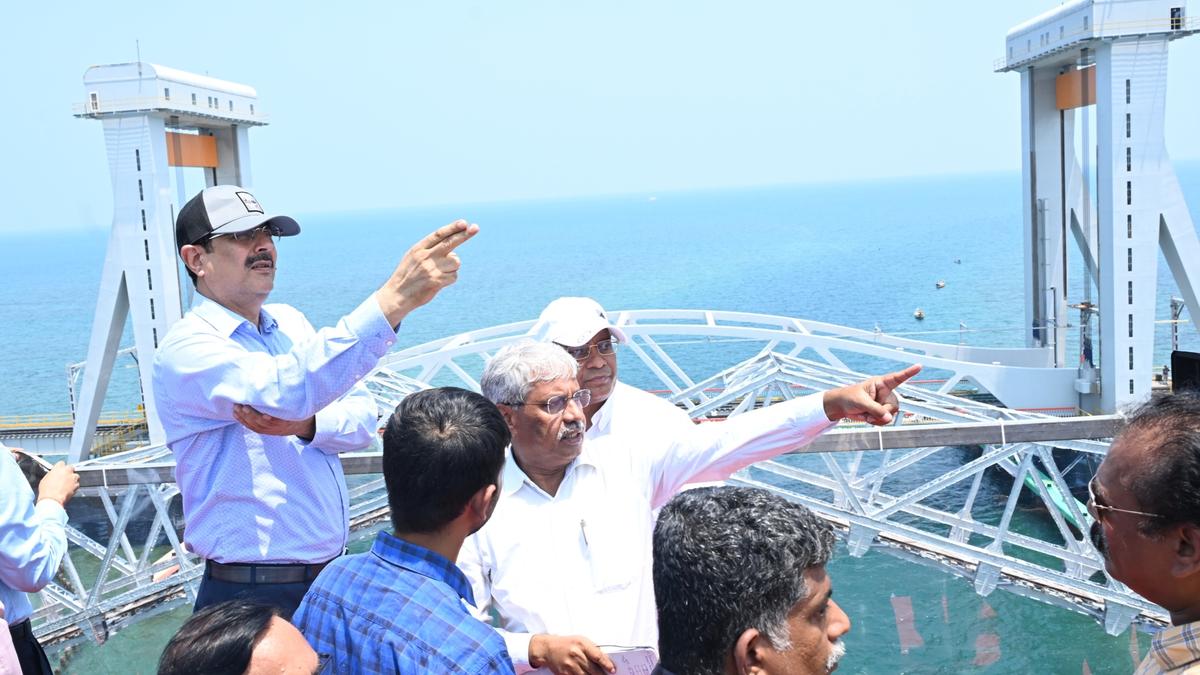
- 30 Mar 2025
In News:
Prime Minister Narendra Modi inaugurated the newly constructed Pamban Rail Bridge on April 6, 2025, coinciding with Ram Navami. The bridge connects Mandapam (mainland Tamil Nadu) to Rameswaram Island, replacing the century-old Pamban bridge.
Key Highlights:
- Total Project Cost: ?531 crore
- Constructed by:Rail Vikas Nigam Limited (RVNL)
- Bridge Type:Vertical-lift railway bridge – thefirst of its kind in India
- Total Length:2.2 km
- Lift Span:72 metres, enabling automated vertical clearance for ships
- Technology: Fully automated lift mechanism (unlike manual operation in the old bridge)
- Materials: Constructed with corrosion-resistant materials for improved longevity
- Sustainability:Solar-compatible design for future energy efficiency
Significance:
- Enhances rail connectivity to Rameswaram, a major religious and tourist destination.
- Improves maritime navigation safety by enabling faster ship movement through the lift span.
- Strengthens coastal infrastructure in Tamil Nadu, supporting economic and strategic interests.
Old Pamban Bridge (1914–2022): A Legacy
- Inaugurated: 1914 by British India (under Madras Railway)
- Length: 2.065 km with 143 piers
- Mechanism:Double-leaf bascule (Scherzer lift) manually operated for ship passage
- Structure Height: 12.5 m above sea level
- Distinction: India’s first sea bridge; remained operational for over 108 years
- Reason for Closure: Severe corrosion led to decommissioning in 2022
Safety and Commissioning Notes:
- The Commissioner of Railway Safety (CRS) conducted a statutory inspection in November 2024.
- CRS had flagged structural and planning lapses; rectification was completed before inauguration.
- Parts of the old bridge will be preserved due to its historical value, though full relocation is not feasible.
Additional Developments:
- New Train Flagged Off: PM Modi flagged a new train service between Tambaram and Rameswaram.
- Rameswaram Station Redevelopment: Work is underway and expected to be completed by September 2025.
Great White Sharks
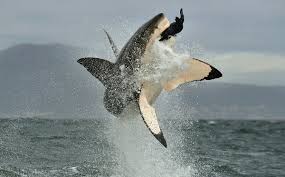
- 30 Mar 2025
In News:
A 20-year study in South Africa reveals that the decline of Great White Sharks disrupted marine ecosystems, causing cascading food web imbalances.
Key Highlights:
- Scientific Name:Carcharodon carcharias
- IUCN Red List Status:Vulnerable
- Habitat and Distribution:
- Commonly found in temperate coastal waters, including regions off the USA, South Africa, Australia, and Japan.
- Highly migratory, often venturing into tropical waters but returning to temperate zones for feeding.
- Key Biological Features:
- Endothermic Adaptation: Capable of maintaining body temperature higher than surrounding waters (regional endothermy).
- Body Structure: Streamlined, torpedo-shaped body with serrated teeth for efficient hunting.
- Feeding Behavior: Ambush predator – uses a "bite-and-wait" strategy to hunt seals, dolphins, and large fish.
- Reproduction:
- Viviparous: Gives birth to live young.
- Gestation Period: Around 12 months.
- Maturity:
- Females: Mature at 15–16 feet, around 12–18 years of age.
- Males: Mature at 11–13 feet, around 10 years of age.
- Ecological Importance:
- Apex Predator: Plays a crucial role in maintaining the balance of marine ecosystems by regulating populations of prey such as seals and mid-level predators.
- Indicator Species: Their presence signals the health and stability of marine ecosystems.
- Ecological Disruption in South Africa – Key Findings:
- A 20-year study in False Bay, South Africa, revealed a significant decline in Great White Shark numbers.
- This led to:
- A surge in seal populations and sevengill sharks.
- A corresponding collapse in populations of smaller sharks and fish, showcasing a trophic cascade and food web imbalance.
USCIRF’s 2025 Report
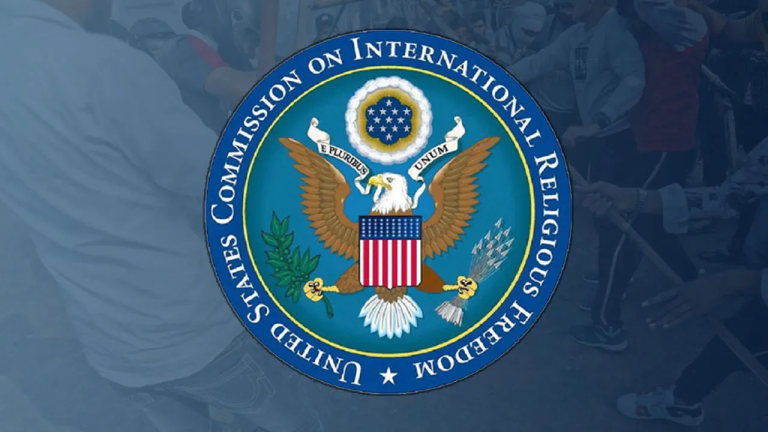
- 30 Mar 2025
In News:
In its 2025 Annual Report, the United States Commission on International Religious Freedom (USCIRF) recommended designating India as a "Country of Particular Concern" (CPC), citing alleged systemic violations of religious freedom.
Key USCIRF Recommendations:
- Label India as a CPC under the International Religious Freedom Act (IRFA), 1998.
- Impose targeted sanctions on Indian institutions, including the Research and Analysis Wing (RAW), and individuals such as Vikash Yadav.
- Review bilateral defence agreements, including drone deals.
- Prioritise religious freedom in diplomatic dialogues with India.
- Reintroduce the Transnational Repression Reporting Act, 2024 to monitor global religious freedom violations.
About USCIRF:
- Established by: U.S. Congress (1998) under IRFA.
- Nature: Independent, bipartisan federal agency.
- Not affiliated with: U.S. State Department (but works in coordination).
- Structure: 9 Commissioners appointed by the U.S. President and Congressional leaders.
- Mandate: Monitor global religious freedom (FoRB), advise U.S. leadership, recommend sanctions, and publish annual reports.
Core Functions:
- Track global trends in freedom of religion or belief.
- Recommend policy actions including CPC designation.
- Advocate for religious prisoners of conscience.
- Maintain a FoRB Victims List and issue thematic reports.
India’s Official Response:
The Ministry of External Affairs (MEA) firmly rejected USCIRF’s report, calling it “biased and politically motivated.”
- MEA Spokesperson Randhir Jaiswal criticized the report for misrepresenting isolated incidents and ignoring India’s multicultural and pluralistic society.
- Highlighted India’s 1.4 billion diverse population, representing all major religions.
- Emphasized that USCIRF’s assessments reflect a deliberate narrative rather than genuine concern for religious rights.
- Asserted that such reports would not affect India’s image as a democratic and tolerant nation.
- Called for USCIRF itself to be recognized as an “entity of concern.”
Vertically-Launched Short-Range Surface-to-Air Missile (VL-SRSAM)
- 30 Mar 2025
In News:
India successfully conducted a flight test of the VL-SRSAM from a defence testing range off the Odisha coast.
Overview:
- Type: Indigenous short-range surface-to-air missile (SRSAM)
- Developed by: Defence Research and Development Organisation (DRDO)
- Purpose: Designed for quick reaction air defence, capable of intercepting a variety of aerial threats including low-altitude sea-skimming targets.
- Users:Originally developed for the Indian Navy, with applications now extending to the Indian Air Force for safeguarding air bases.
Performance Parameters:
- Initial range: 40 km (Navy version)
- Extended range: Up to 80 km
- Maximum altitude: 16 km
- Top speed: Mach 4.5
Technical Specifications:
- Length: 3.93 meters
- Diameter: 178 mm
- Wingspan: 508 mm
- Weight: ~170 kg
- Propulsion: Solid fuel
- Guidance System:
- Mid-course: Inertial navigation based on fibre-optic gyroscope
- Terminal phase: Active radar homing
- Launcher Configuration: Twin quad-pack canisters integrated with weapon control systems (WCS) for multiple missile launches.
Significance:
- Enhances India's self-reliant air defence capability.
- Supports indigenous development under the Aatmanirbhar Bharat initiative.
- Strengthens India's maritime and aerial defensive posture through versatile deployment.
Baalpan ki Kavita Initiative

- 30 Mar 2025
In News:
To fulfil the vision of NEP 2020, the Department of School Education & Literacy (DoSE&L), Ministry of Education has launched “Baalpan ki Kavita initiative: Restoring Bhartiya rhymes/poems for young children” for preparing a compendium of nursery rhymes/poems in all Bhartiya Bhasha and also in English, focusing on content relevant to the Indian context.
Key Highlights:
Objective:To compile a national-level compendium of nursery rhymes and poems in all Bhartiya Bhashas (Indian languages) and English, with a focus on culturally relevant content for early childhood learning.
Key Features:
- Encourages multilingual and mother-tongue based education, in line with National Education Policy (NEP) 2020.
- Aims to make foundational learning joyful, relatable, and rooted in Indian ethos.
- Invites existing folklore rhymes and newly composed poems across three age-based categories:
- Pre-primary: Ages 3–6
- Grade 1: Ages 6–7
- Grade 2: Ages 7–8
- Open to submissions in all Indian languages and English.
Significance:
- Reinforces foundational literacy through culturally contextual content.
- Promotes regional literature, creativity, and early multilingualism.
- Strengthens identity and connection to Indian culture from an early age.
Baalpan ki Kavita Initiative

- 30 Mar 2025
In News:
To fulfil the vision of NEP 2020, the Department of School Education & Literacy (DoSE&L), Ministry of Education has launched “Baalpan ki Kavita initiative: Restoring Bhartiya rhymes/poems for young children” for preparing a compendium of nursery rhymes/poems in all Bhartiya Bhasha and also in English, focusing on content relevant to the Indian context.
Key Highlights:
Objective:To compile a national-level compendium of nursery rhymes and poems in all Bhartiya Bhashas (Indian languages) and English, with a focus on culturally relevant content for early childhood learning.
Key Features:
- Encourages multilingual and mother-tongue based education, in line with National Education Policy (NEP) 2020.
- Aims to make foundational learning joyful, relatable, and rooted in Indian ethos.
- Invites existing folklore rhymes and newly composed poems across three age-based categories:
- Pre-primary: Ages 3–6
- Grade 1: Ages 6–7
- Grade 2: Ages 7–8
- Open to submissions in all Indian languages and English.
Significance:
- Reinforces foundational literacy through culturally contextual content.
- Promotes regional literature, creativity, and early multilingualism.
- Strengthens identity and connection to Indian culture from an early age.
Tejas LCA Mk1A
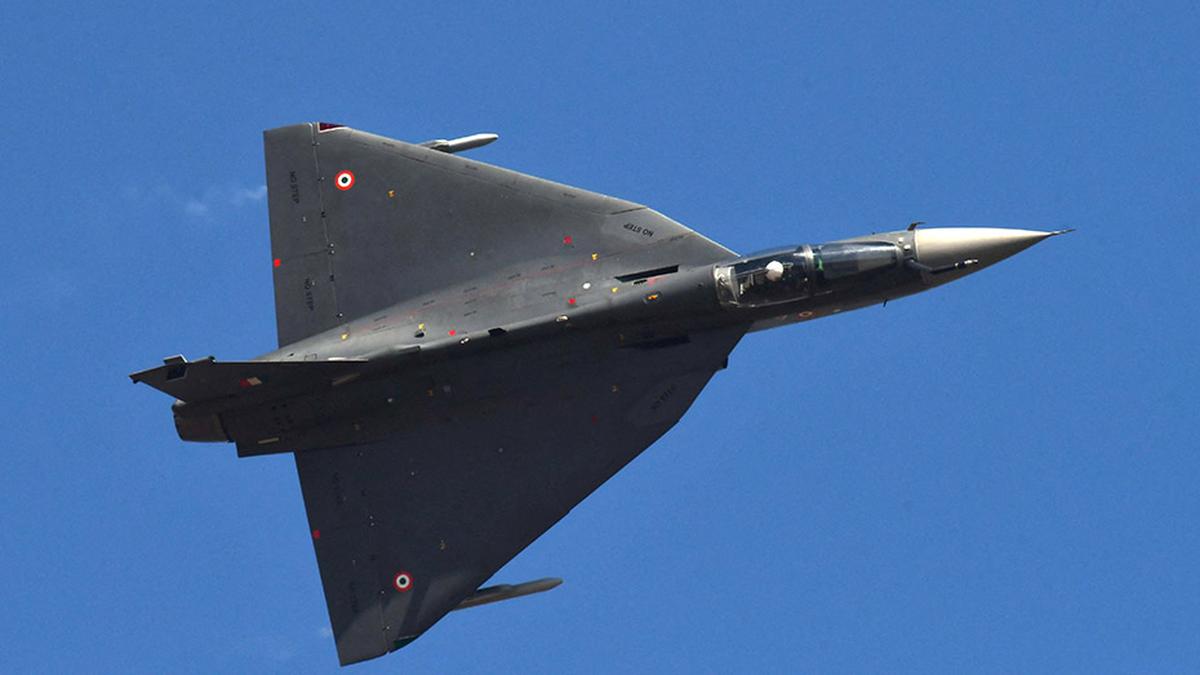
- 29 Mar 2025
In News:
GE Aerospace has commenced delivery of F404-IN20 jet engines to Hindustan Aeronautics Limited (HAL) for the Tejas Light Combat Aircraft Mk1A. This marks a significant milestone in India’s indigenous defence production capabilities and is vital for bridging the Indian Air Force's (IAF) operational gaps.
Background on Tejas LCA Mk1A
- Tejas LCA Mk1A is an advanced version of the indigenous Light Combat Aircraft (LCA) developed by HAL.
- It incorporates over 40 improvements over the Mk1 variant, aimed at enhancing combat readiness, survivability, and ease of maintenance.
Key Features:
- Radar Systems:
- Israeli EL/M-2052 AESA Radar.
- Indigenous Uttam AESA Radar (under integration).
- Electronic Warfare:
- Unified Electronic Warfare Suite (UEWS).
- Advanced Self-Protection Jammer Pod.
- Weapons Capability:Nine hardpoints supporting Beyond Visual Range (BVR) missiles, Air-to-Air and Air-to-Ground missiles, and Advanced Short-Range Air-to-Air Missiles (ASRAAM).
- Digital Fly-by-Wire System:Upgraded Flight Control Computer (DFCC Mk1A).
- Improved Operational Efficiency:Reduced weight, enhanced maintainability, and faster sortie turnaround.
Engine Deliveries and Production Status
- First Engine Delivered: March 26, 2025; expected in India by April.
- Engine Type: F404-IN20 by GE Aerospace – a high-thrust variant tailored for IAF needs.
- Key Engine Features:
- Higher-flow fan, single-crystal turbine blades, and customized components.
- Achieved Mach 1.1 during Tejas’ maiden flight in 2008.
Delivery Commitments:
- 2025 Target: 12 engines and 12 Tejas Mk1A jets to be delivered.
- Full Order: 99 engines ordered in 2021.
- Production Goal: HAL to produce 24 aircraft per year.
- Current Readiness: Three Mk1A jets flying; 11 more expected by end-2025 (10 from Bengaluru, 1 from Nasik).
Production Challenges:
- Engine production was dormant for five years.
- Reinitiating during the COVID-19 pandemic caused further delays.
- GE has now stabilized its supply chain and resumed engine production.
Strategic Importance for IAF
- Current IAF Strength: 31 fighter squadrons (sanctioned strength: 42.5).
- Urgency: Older aircraft like Jaguar, MiG-29UPG, and Mirage-2000 will begin phasing out by decade-end.
- Future Platforms: LCA Mk2 is under development; AMCA (Advanced Medium Combat Aircraft), India’s 5th-gen stealth fighter, is still a decade away.
Policy Push:A high-level committee led by the Defence Secretary submitted recommendations to the Defence Minister for enhancing IAF capabilities in short, medium, and long-term.
Lyme Disease
- 29 Mar 2025
In News:
Lyme disease, also known as Lyme borreliosis, is a bacterial infection caused by Borrelia burgdorferi. It is transmitted to humans through the bite of infected blacklegged ticks, commonly known as deer ticks. These ticks become carriers when they feed on infected animals, such as rodents. Importantly, Lyme disease does not spread from person to person, nor through food, water, air, pets, or other insects like mosquitoes and flies.
The disease is primarily reported in North America, Europe, and parts of Asia, particularly in wooded and grassy regions during the warmer months. In the United States, it is most prevalent in the northeastern, mid-Atlantic, and upper Midwestern states.
Symptoms and Progression
Lyme disease often begins with a characteristic red, expanding rash called erythema migrans, which may appear in a bull’s-eye pattern. Early symptoms also include fever, chills, fatigue, muscle aches, headache, and swollen lymph nodes. If untreated, it can progress to cause:
- Neurological issues: meningitis, facial palsy (Bell’s palsy), nerve pain, and brain inflammation.
- Cardiovascular problems: irregular heartbeat and heart block.
- Musculoskeletal symptoms: arthritis, joint pain (especially in the knees), and swelling.
- Other effects: dizziness, vision problems, memory issues, and concentration difficulties (often referred to as “brain fog”).
Treatment Protocol
Lyme disease is primarily treated with antibiotics, especially when diagnosed early. Common antibiotics include doxycycline (for adults and children over 8 years), amoxicillin (for younger children and pregnant women), cefuroxime, and azithromycin (for those allergic to other options). The treatment duration varies:
- Localized skin infections: 14 days
- Early disseminated infections: 21 days
- Lyme arthritis: 28 to 60 days
- Severe or neurological cases may require intravenous antibiotics like ceftriaxone
In some cases, symptoms may persist even after treatment, a condition known as Post-Treatment Lyme Disease Syndrome (PTLDS). While the exact cause is unknown, continued antibiotic use does not improve outcomes, and treatment focuses on managing symptoms.
Recent Scientific Breakthrough
In a major scientific advancement, researchers have identified a crucial enzyme—lactate dehydrogenase specific to Borrelia burgdorferi (BbLDH)—which plays a vital role in the bacterium's survival and infectivity. Unlike most organisms that rely on thiamin-dependent metabolism, B. burgdorferi uniquely depends on BbLDH to convert pyruvate to lactate, maintaining its NADH/NAD+ balance.
The research, conducted at Virginia Commonwealth University and published in mBio, demonstrated through genetic, biochemical, and structural analysis that BbLDH is essential for the growth and infection capability of the Lyme disease bacterium. Loss-of-function studies confirmed its indispensability, both in laboratory and in vivo models.
High-throughput screening of chemical compounds led to the identification of several promising BbLDH inhibitors. These inhibitors could form the basis for future, highly targeted treatments against Lyme disease. Moreover, the findings have broader implications for tackling other tick-borne illnesses.
Delhi Joins National e-Vidhan Application (NeVA)
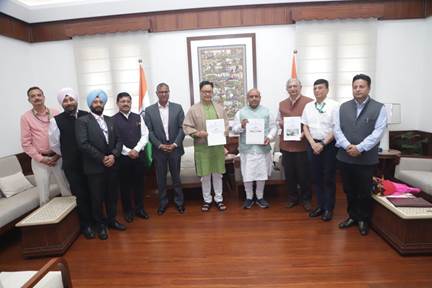
- 29 Mar 2025
In News:
The Delhi Legislative Assembly has become the 28th legislature in India to sign a tripartite Memorandum of Understanding (MoU) with the Ministry of Parliamentary Affairs (MoPA) and the Government of NCT of Delhi for implementing the National e-Vidhan Application (NeVA). This move marks a significant advancement in India's push for paperless, transparent, and efficient legislative processes.
About NeVA:
- Developed by: Ministry of Parliamentary Affairs
- Hosted on:Meghraj 2.0, India’s national cloud infrastructure
- Objective: To digitize legislative operations across State Legislatures and Union Territory Assemblies
- Vision: Aligned with the “One Nation, One Application” initiative
Key Features:
Feature Description
Device-Neutral Accessible via smartphones, tablets, laptops, and desktops
Real-Time Access Legislators can view agendas, bills, questions, committee reports, and proceedings anytime
Digital Repository Secure storage for legislative documents with confidentiality and integrity
Multilingual Support Facilitates linguistic inclusivity across India
Member-Centric Tools Access to member directories, notices, starred/unstarred Q&A, digital bulletins, and
house business
Public Interface Allows citizens and media to access legislative documents and updates
Smart Legislative Tools Aids Speakers/Chairs in conducting proceedings smoothly
Stakeholders Benefiting from NeVA:
- Members of Legislative Assemblies and Councils
- Government Ministers and Department Staff
- Assembly Secretariat Officials
- Media and General Public
Delhi’s Onboarding Highlights:
- Signed By: Ministry of Parliamentary Affairs, Delhi Legislative Assembly, and GNCTD
- Purpose: To empower Delhi MLAs with digital tools and reduce paper-based procedures
- Significance: Part of Delhi’s 100-day governance agenda aimed at modernization and transparency
Coeliac Disease
- 29 Mar 2025
In News:
Recent advancements in artificial intelligence (AI) may significantly accelerate the diagnosis of coeliac disease, an inherited autoimmune disorder triggered by gluten consumption. Researchers at the University of Cambridge have developed an AI-based tool capable of diagnosing the disease swiftly and accurately, potentially transforming current diagnostic practices.
What is Coeliac Disease?
- Nature: An inherited autoimmune disorder.
- Cause: Triggered by consumption of gluten, a protein found in wheat, barley, and rye.
- Mechanism: Gluten intake causes an immune reaction in the small intestine, damaging the intestinal lining (villi), leading to malabsorption of nutrients.
Key Symptoms:
- Gastrointestinal: Diarrhoea, bloating, stomach cramps, weight loss
- Systemic: Fatigue, anaemia, skin rashes
- In children: Impaired growth and development
- Long-term complications: Malnutrition, osteoporosis, infertility, anaemia, and increased risk of autoimmune diseases and certain cancers
Prevalence and Risk Factors:
- Affects approximately 1 in 100 people worldwide
- About 700,000 people in the UK live with the disease
- Individuals with a first-degree relative (parent, sibling, or child) with coeliac disease have a 1 in 10 risk
- It can develop at any age after gluten consumption begins
Diagnosis and Treatment:
- Current Diagnostic Method:
- Blood tests to detect gluten antibodies
- Duodenal biopsy to assess damage to villi (requires analysis by pathologists)
- Treatment: No cure; managed through a strict lifelong gluten-free diet
AI-Based Diagnostic Advancement:
- Development: By University of Cambridge researchers
- Function: The AI model analyses biopsy images to detect villous damage
- Training: Based on 4,000+ biopsy images from five hospitals using scanners from four manufacturers
- Efficiency: Matches the accuracy of expert pathologists, with diagnosis in under a minute
- Impact: Could eliminate delays caused by backlog in pathology labs and speed up diagnosis for patients
Significance of AI in Healthcare:
- Benefits:
- Faster diagnosis for patients
- Reduces burden on pathologists and NHS waiting lists
- Frees up time for pathologists to focus on more critical cases (e.g., cancer)
- Expert Support:Recognised by the Royal College of Pathologists as a tool with the potential to transform diagnostic pathology
- Future Requirements:
- Investment in digital pathology
- Integrated IT systems across health organisations
- Training for medical professionals in AI-based diagnostic tools
Bhadra Wildlife Sanctuary
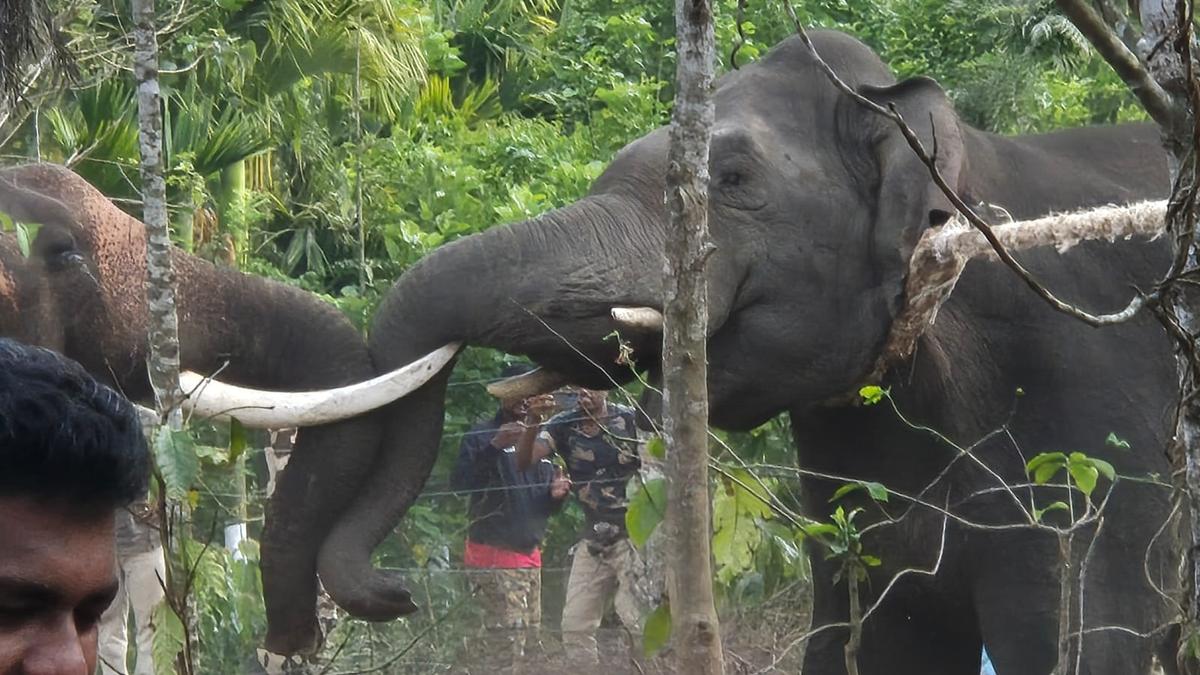
- 29 Mar 2025
In News:
Karnataka Forest Department has initiated a "soft release" strategy to address the escalating human-elephant conflict in the districts of Hassan, Chikkamagaluru, and Kodagu. The strategy involves the phased rehabilitation of captured elephants into the Bhadra Wildlife Sanctuary (BWS).
Soft Release Strategy – Key Highlights
- Objective: To rehabilitate conflict-prone wild elephants and reduce human-elephant encounters.
- Implementation Site:Bhadra Wildlife Sanctuary (BWS), Chikkamagaluru district.
- Initial Step: Captured elephants will be placed in a 20 sq. km enclosure within the sanctuary.
- Purpose of Enclosure:
- Acclimatisation to the wild.
- Health monitoring and behavioural assessment.
- Final Release: Once deemed fit, elephants will be released into one of four pre-identified zones in BWS, chosen based on:
- Availability of water and forage.
- Absence of human activity.
- Road connectivity.
Monitoring & Management
- The enclosure will be fenced using railway barricades.
- A dedicated team of veterinarians will supervise the elephants from a nearby veterinary centre.
- Minimal human interaction will be ensured during the acclimatisation period.
- Expert guidance is being provided by Prof. R. Sukumar (Indian Institute of Science) and senior forest officials.
About Bhadra Wildlife Sanctuary (BWS)
- Location: Western Ghats, Karnataka.
- Area: 492.30 sq. km.
- Also Known As:Muthodi Wildlife Sanctuary.
- Named After: Bhadra River.
- Status: A designated Project Tiger Reserve.
Ecological Significance
- Forest Types:
- Southern Moist Mixed Deciduous Forests.
- Dry Deciduous Forests.
- Shola Forests.
- Wildlife Diversity:
- Mammals: Tigers, leopards, elephants, gaurs, dholes, and deer.
- Birds: ~250 species, including endemic birds like Hornbills, Malabar Trogon, and Hill Myna.
Significance of the Initiative
- Biodiversity Conservation: Enhances protection of endangered species and habitats in the Western Ghats.
- Conflict Mitigation: Aims to provide a sustainable solution to frequent elephant incursions, crop damage, and human casualties.
- Model Strategy: Draws upon similar practices implemented in West Bengal and tailors them to Karnataka’s ecological conditions.
Gold Monetisation Scheme (GMS)
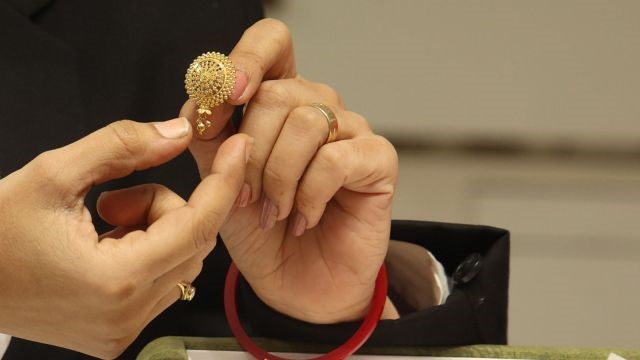
- 28 Mar 2025
In News:
The Government of India discontinued the Medium-Term and Long-Term Government Deposits (MLTGD) under the Gold Monetisation Scheme (GMS) with effect from March 26, 2025. Earlier, the Sovereign Gold Bond (SGB) scheme was also discontinued.
What is the Gold Monetisation Scheme (GMS)?
- Launched: 15th September 2015 (improved version of earlier Gold Deposit Scheme and Gold Metal Loan Scheme).
- Objective:
- Mobilize idle gold held by households and institutions.
- Bring privately held gold into the formal economy.
- Reduce the country's dependence on gold imports.
- Help lower the Current Account Deficit (CAD).
- Eligibility: Individuals, institutions, and government entities could deposit their idle gold in banks.
- Redemption:
- Gold is not returned in the same form (e.g., jewellery).
- Maturity proceeds are redeemed in the form of cash, gold bars, or coins (depending on the type of deposit).
Types of Deposits under GMS (Before Discontinuation of MLTGD):
- Short-Term Bank Deposit (STBD):
- Tenure: 1–3 years
- Interest Rate: Variable; decided by banks
- Redemption: Gold or cash
- Use: Lending by banks for domestic needs
- Medium-Term Government Deposit (MTGD):
- Tenure: 5–7 years
- Interest Rate: 2.25%; decided by Govt. in consultation with RBI
- Redemption: Cash only
- Use: Government and RBI reserves
- Long-Term Government Deposit (LTGD):
- Tenure: 12–15 years
- Interest Rate: 2.5%; decided by Govt. in consultation with RBI
- Redemption: Cash only
- Use: Monetary policy operations and reserves
Note: As of 2025, only the Short-Term Bank Deposit remains operational.
Sovereign Gold Bond (SGB) Scheme – Overview:
- Launched: 2015
- Objective:
- Reduce demand for physical gold.
- Promote investment in financial gold instruments.
- Channel household savings into productive financial assets.
- Key Features:
- Issued in denominations of 5g, 10g, 50g, and 100g.
- Tenure: 8 years (with exit option after 5 years).
- Interest Rate: 2.5% per annum (paid semi-annually).
- Capital gains tax exemption on maturity.
- Backed by the Government of India.
- Status: Discontinued as of 2025, alongside MLTGD and LTGD under GMS.
Other Gold-Related Initiative:
- Indian Gold Coin Scheme (2015):
- First-ever national gold coin with the Ashoka Chakra emblem.
- Launched alongside GMS and SGB to promote domestically branded gold and reduce reliance on imported gold bars/coins.
Parker Solar Probe

- 28 Mar 2025
In News:
Recently, the NASA’s Parker Solar Probe made another close approach to the Sun, reaching within 6 million km of its surface. It continues to break records as the closest any human-made object has come to the Sun, aiming to improve our understanding of solar activity and space weather.
Key Highlights:
- Background:Launched on August 12, 2018, by NASA from Cape Canaveral, Florida, the Parker Solar Probe is designed for in-situ study of the Sun's outer atmosphere (corona), solar wind, and magnetic field. It was named after physicist Eugene Parker, who first theorized the existence of the solar wind in the late 1950s.
- Mission Objectives:
- Investigate the structure and dynamics of the solar corona
- Understand the origin and evolution of solar wind
- Study energetic particles responsible for solar storms
- Examine the mechanisms that heat the corona to over a million degrees Celsius while the Sun’s surface remains relatively cooler at ~6,000°C
- Orbital Details & Speed:The Parker Probe moves in a highly elliptical orbit using Venus' gravity for repeated assists to get closer to the Sun. It is the fastest human-made object, reaching speeds of up to 692,000 km/hr. Its closest planned approach is 6.16 million km (3.83 million miles) from the Sun—about seven times closer than any previous spacecraft.
- Heat Protection Technology:To withstand extreme solar radiation, the probe uses an 8-foot-wide, 4.5-inch-thick carbon-carbon composite heat shield capable of resisting temperatures up to 1,377°C. The shield’s sun-facing side is coated with white ceramic paint to reflect sunlight, and its design ensures that just behind the shield, temperatures drop to a manageable 29°C, protecting the onboard instruments.
- Scientific Instruments Onboard:
- FIELDS – Measures electric and magnetic fields in the corona.
- ISoIS (Integrated Science Investigation of the Sun) – Studies high-energy solar particles.
- SWEAP (Solar Wind Electrons, Alphas, and Protons) – Captures data on solar wind particles.
- WISPR (Wide-Field Imager) – Takes images of the solar corona and heliosphere.
- Faraday Cup – An external device made of molybdenum alloy (melting point: 2,349°C), measures ion and electron densities in solar wind.
- Key Discoveries:
- First ‘Touch’ of the Sun (April 2021): The probe crossed the Sun’s Alfvén surface — the boundary where solar wind escapes the Sun’s influence — thus officially entering the solar corona.
- Magnetic Switchbacks: Detected sudden reversals in the Sun’s magnetic field direction, providing clues about how solar wind accelerates.
- Dust-Free Zones: Found regions near the Sun unexpectedly devoid of dust, challenging earlier theories about uniform dust distribution in the solar system.
- Corona Heating Mystery: Parker’s data, especially on Alfvén waves and magnetic switchbacks, may help solve why the corona is vastly hotter than the Sun’s surface
- Challenges Overcome:Contrary to expectations, the Sun’s gravity, not heat, posed a significant challenge. High speeds needed careful navigation to avoid crashing into the Sun. The mission used Earth and Venus flybys to gradually spiral inward for closer approaches rather than the initial, longer route via Jupiter.
- Mission Timeline:The Parker Solar Probe is scheduled to make 24 close passes of the Sun, continuing into the 2030s. Each pass provides new insights into solar activity and its potential impacts on Earth.
- Comparison with India’s Aditya-L1 Mission:While the Parker Solar Probe performs in-situ analysis by flying into the corona, ISRO’s Aditya-L1, launched in 2023, is stationed at the Lagrange Point 1 (L1), 1.5 million km from Earth. Aditya-L1 remotely observes solar flares, coronal mass ejections (CMEs), and magnetic storms using seven payloads, including a coronagraph.
IEA Global Energy Review 2025
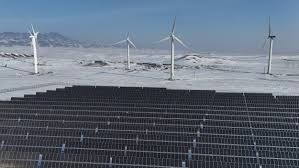
- 28 Mar 2025
In News:
The world's energy demand grew at 2.2% in 2024, a pace described as "faster than average" by the International Energy Agency (IEA) in its Global Energy Review.
Key Highlights:
Global Energy Demand
- Global energy demand grew by 2.2% in 2024, faster than the average of the past decade.
- Emerging and developing economies accounted for over 80% of the increase, with Asia leading the growth.
- Electricity demand rose 4.3%, nearly double the past decade's average.
Rise of Renewables
- Renewables were the fastest-growing energy source, contributing 38% of global energy growth.
- A record 700 GW of renewable power capacity was added globally in 2024 (22nd consecutive annual record).
- Low-emission sources (renewables + nuclear) accounted for 80% of the increase in electricity generation.
Key Country Contributions:
- China added:340 GW solar and 80 GW wind (≈ two-thirds of global additions).
- India added:30 GW solar, triple the previous year's addition.
Global Renewable Generation (2024):
- Solar: +480 TWh
- Wind: +180 TWh
- Hydropower: +190 TWh (mainly due to favorable weather, not capacity increase)
Coal Trends:
- Coal demand rose 1%, reaching a record high in 2024.
- China derives 60% of its electricity from coal; India, about 75%.
- Coal’s global electricity share dropped to 35% – the lowest since the IEA's inception in 1974.
- The seaborne coal market is shrinking as top consumers are also top producers with domestic-use policies.
Natural Gas Outlook
- Natural gas demand rose 2.7%, hitting a record 115 billion cubic metres in 2024.
- Driven by:
- China's adoption of LNG trucks
- Heatwaves increasing power demand
- However, demand fell in late 2024 due to rising LNG spot prices, indicating price sensitivity in Asia.
Crude Oil Demand Slows
- Oil demand grew just 0.8%, mainly from the petrochemical sector.
- Transport-related oil use declined due to:
- Growth in electric vehicles (EVs) (especially in China)
- Expansion of LNG trucks and high-speed rail networks
About the International Energy Agency (IEA)
- Founded: 1974 (post-1973 oil crisis) by OECD nations.
- HQ: Paris, France.
- Members: 31 countries (only OECD nations can be full members); India is an association country.
- Mandate: Energy security, sustainability, and global cooperation.
- Key Reports: World Energy Outlook, India Energy Outlook, World Energy Investment Report, Global Energy Review.
Accelerated Glacier Loss in Hindu Kush Himalayas
- 28 Mar 2025
In News:
On World Day for Glaciers (March 21, 2025), the United Nations World Water Development Report 2025 revealed that glaciers globally are retreating at an alarming rate, with the Hindu Kush Himalaya (HKH) region witnessing the most severe impact — glacier loss accelerated by 65% between 2011–2020 compared to the previous decade.
Key Facts about Hindu Kush Himalaya (HKH) Region
- Geographical Spread: Extends over 3,500 km across 8 countries — Afghanistan, Bangladesh, Bhutan, China, India, Myanmar, Nepal, and Pakistan.
- Population Impact:
- 240 million people live in the HKH region.
- An additional 1.65 billion people downstream depend on its waters for drinking, agriculture, hydropower, and sanitation.
- Glacial Reservoir: Known as the “Third Pole” or “Water Tower of Asia”, the HKH stores more ice than anywhere outside the Arctic and Antarctic.
- River Systems: Source of 10 major river basins, including the Ganges, Indus, Brahmaputra, and Mekong.
Projected Glacier Loss (HKH and Global)
Temperature Rise (°C) HKH Glacier Volume Loss by 2100
1.5°C to 2°C 30%–50%
Above 2°C ~45% (from 2020 baseline)
- Global Glacier Loss: Mountain glaciers may lose 26%–41% of total mass globally by 2100, affecting 1.1 billion people in mountain regions.
Disaster Risks from Glacier Melt
- Glacial Lake Outburst Floods (GLOFs):
- Trigger flash floods and landslides.
- Have caused over 12,000 deaths globally in the past 200 years.
- In the HKH region alone, GLOFs are linked to over 7,000 deaths in the last 190 years.
- Risk of GLOFs may triple by 2100.
- Glacial Lakes: Rapid warming is expanding the number and area of glacier-fed lakes, increasing hazard potential.
Cryosphere and Climate Change
- Hydrological Changes: Melting glaciers alter water runoff patterns, with varied impacts across river basins — increasing monsoon runoff in some while reducing dry-season flows in others.
- Hydropower Challenges:
- Glacial melt initially boosts hydropower potential but may be offset by increased evaporation and reduced glacier mass over time.
- Many hydropower and cryptocurrency mining projects are unregulated and stress fragile mountain ecosystems.
- Mountain-Based Industries: Lithium mining in the Andes, for instance, uses up to 2,000 m³ of water per tonne, intensifying water stress.
Governance and Cooperation Gaps
- Weak Water Governance: Mountain regions, including the HKH, lack effective transboundary cooperation due to mutual distrust and poor data sharing.
- Transboundary Action Plan (HKH):
- Enhance cooperation at all levels.
- Prioritize rights and knowledge of mountain people.
- Limit global warming to 1.5°C.
- Fast-track SDG implementation in mountain areas.
- Strengthen ecosystem resilience and biodiversity.
- Promote regional data sharing and scientific collaboration.
UN Actions and Global Recognition
- International Year of Glacier Preservation (IYGP): 2025
- Decade of Action on Cryospheric Science: 2025–2034 — to advance global efforts in glacier conservation, data collection, and sustainable development in cryosphere-dependent regions.
IISc Study on Monsoon Cloud Bands and Rainfall Intensity
- 28 Mar 2025
In News:
A recent study by the Indian Institute of Science (IISc) has challenged the conventional understanding of monsoon dynamics by highlighting the critical role of cloud band strength in determining the movement and intensity of rainfall during the Indian monsoon season.
Key Findings of the Study:
- Strength Determines Propagation: Only strong equatorial cloud bands are capable of northward movement, initiating wet spells over the Indian subcontinent. Weak cloud bands fail to propagate, contradicting earlier models that assumed uniform northward movement.
- Role of BSISO: The Boreal Summer Intraseasonal Oscillation (BSISO) governs alternating wet and dry spells by transporting cloud bands from the equator to India. The duration and intensity of wet spells are influenced by the size and strength of these cloud bands.
- Air-Sea Interaction: Interaction between the equatorial Indian Ocean’s sea surface and atmosphere significantly influences moisture buildup and wind strength. A stronger ocean-atmosphere coupling enhances moisture transport, intensifying the monsoon.
- Impact of Climate Change:
- Warmer atmosphere → Increased background moisture.
- Future wet spells may see 42%–63% more rainfall over India and adjoining seas.
- Improving Forecast Models: These insights will enhance the accuracy of seasonal and sub-seasonal monsoon prediction models, crucial for agriculture and disaster preparedness.
Understanding BSISO (Boreal Summer Intraseasonal Oscillation)
- A dominant monsoon variability pattern active from June to September.
- Modulates ‘active’ (rainy) and ‘break’ (dry) phases of the monsoon.
- Moves cloud activity and convection from the Indian Ocean towards the Western Pacific.
- ENSO link:
- La Niña enhances BSISO propagation → stronger monsoon.
- El Niño suppresses it → weaker monsoon.
Key Facts about the Indian Monsoon
Aspect Details
Definition “Monsoon” comes from Arabic mausim meaning season.
Southwest Monsoon June–September; moist winds from Indian Ocean bring ~80% of India’s
annual rainfall.
Northeast Monsoon October–December; brings rain to Tamil Nadu, coastal Andhra Pradesh.
Key Drivers ITCZ shift, Tibetan heating, Tropical Easterly Jet, Somali Jet.
Oceanic Influences IOD (positive enhances, negative weakens monsoon), ENSO (El Niño
weakens,La Niña strengthens monsoon).
Monsoon Importance Critical for agriculture, water supply, economy; affects ~50% of India’s
population directly.
Rushikonda Beach Regains prestigious Blue Flag Certification
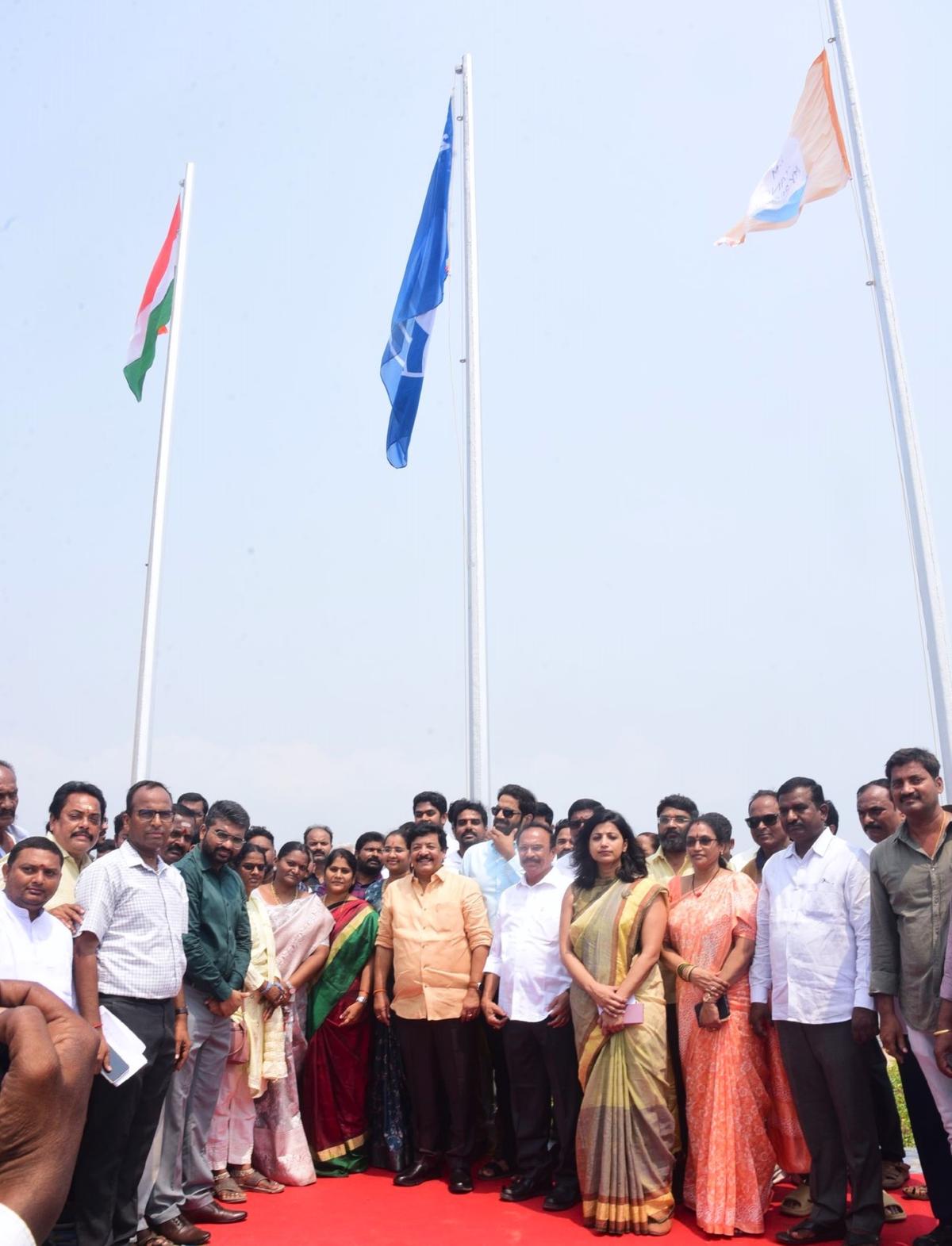
- 27 Mar 2025
In News:
Rushikonda Beach, located in Visakhapatnam, Andhra Pradesh, has successfully regained its Blue Flag certification after a temporary withdrawal due to non-compliance issues. It remains the only Blue Flag-certified beach in Andhra Pradesh and one of 13 such beaches in India.
What is the Blue Flag Certification?
- Administered by: Foundation for Environmental Education (FEE), Denmark.
- National Operator in India: Blue Flag India under the Society of Integrated Coastal Management (SICOM).
- Purpose: Recognizes beaches meeting strict standards of environmental management, safety, cleanliness, and facilities.
- Criteria: Beaches must comply with 33 environmental and safety criteria, including water quality, waste management, safety measures, and environmental education.
- Control Visits: National Operator conducts scheduled and surprise inspections.
Reasons for Temporary Withdrawal
- The Blue Flag tag was withdrawn after complaints of poor maintenance and non-compliance with amenities.
- Non-compliance types:
- Minor issues require rectification within 10 days.
- Multiple or major issues can lead to temporary or season-long withdrawal.
- Rushikonda Beach lost the tag for about two weeks before corrective measures were implemented.
Measures Taken for Regaining the Blue Flag
- Repair and upgrade of beach amenities.
- Plans to install bamboo fencing around the premises to protect the area.
- Public appeals to avoid littering and misuse.
- Education drives for local fisherfolk on beach cleanliness.
- Plans to promote tourism with new beach shacks and regulated alcohol sales, awaiting government approval.
- Identification of 10 other beaches in Andhra Pradesh for upgradation and Blue Flag certification.
Importance of the Blue Flag Tag for Rushikonda Beach
- Tourism Impact: The Blue Flag is internationally recognized by tourists as a mark of safety, cleanliness, and eco-friendliness.
- Environmental Awareness: Promotes responsible tourism and protects coastal ecosystems.
- Local Economy: Supports livelihoods of petty vendors and fisherfolk by attracting visitors.
Key Facts About Rushikonda Beach
- Location: Visakhapatnam, Andhra Pradesh.
- Awarded Blue Flag: First awarded in 2020.
- Features: Golden sands, clear waters, and well-maintained recreational amenities.
- Significance: The only Blue Flag beach in Andhra Pradesh and among 13 in India.
India’s First Frozen Zoo

- 27 Mar 2025
In News:
In a pioneering conservation step, Padmaja Naidu Himalayan Zoological Park (PNHZP) in Darjeeling, West Bengal, has become India’s first zoo to launch a DNA cryogenic conservation project—popularly known as a “frozen zoo”.
About the DNA Cryogenic Conservation Initiative
- Objective: Preserve genetic material of endangered Himalayan species for future research, assisted reproduction, and biodiversity conservation in case of extinction threats.
- Launched in:2023, with 60 DNA samples already collected.
- Collaborators:
- PNHZP, Darjeeling
- Centre for Cellular and Molecular Biology (CCMB), Hyderabad
- Species covered: Red pandas, snow leopards, Himalayan black bears, and other native animals.
- Source of Samples: Tissue collected from animals deceased in captivity or road accidents.
- Storage Method:
- DNA samples stored in liquid nitrogen at –196°C.
- A dedicated in-zoo laboratory with steel cryo-containers established.
About the Centre for Cellular and Molecular Biology (CCMB)
- Established: 1977; full national lab status in 1981–82.
- Location: Hyderabad, Telangana.
- Affiliation: Under Council of Scientific and Industrial Research (CSIR).
- Recognition: Designated a “Center of Excellence” by UNESCO’s Global Molecular and Cell Biology Network.
- Mandate: Advanced research and training in frontier areas of modern biology.
About Padmaja Naidu Himalayan Zoological Park
Feature Description
Location Darjeeling, West Bengal
Altitude 2,150 metres (7,050 feet) – India’s highest-altitude zoo
Area 67.8 acres
Established 14 August 1958
Renamed 1975 in memory of Padmaja Naidu, former Governor of West Bengal
Transferred to State 1993; now under Ministry of Environment, Forest and Climate Change (MoEFCC)
Focus Areas Ex-situ conservation, education, research, and captive breeding
Notable Species Red pandas, snow leopards, Himalayan wolves, gorals, Siberian tigers
India’s First Indigenous MRI Scanner Installed at AIIMS
- 27 Mar 2025
In News:
AIIMS New Delhi is set to install India’s first indigenously developed MRI scanner for clinical evaluation by October 2025. This marks a major milestone under the government's push for import substitution and promotion of ‘Make in India’ in the medical device sector.
Key Highlights:
- MRI Type: 1.5 Tesla Magnetic Resonance Imaging (MRI) system.
- Developed by: SAMEER (Society for Applied Microwave Electronics Engineering and Research), an autonomous R&D institution under the Ministry of Electronics and Information Technology (MeitY).
- Initiative under: National Mission SCAN-ERA (Swadeshi Chumbakiya Anu-naadChitran – EkRashtriyaAbhiyaan), launched in December 2014.
- Purpose: Clinical evaluation and performance feedback at AIIMS to refine the system for wide-scale clinical use.
- Objective: Reduce dependence on imported diagnostic equipment and lower treatment costs.
Significance:
- Currently, 80–85% of India's medical devices are imported.
- In FY 2023–24, India’s medical device import bill rose by 13% to ?69,000 crore.
- The initiative aligns with the Production-Linked Incentive (PLI) Scheme for medical devices, under which 7 critical devices (including MRI machines, CT scanners, LINACs, heart valves, etc.) are now being domestically manufactured.
- 19 PLI-supported projects have been commissioned to manufacture 46 medical devices.
MRI: How It Works
- Principle: Uses strong magnetic fields and radiofrequency pulses to align protons in tissues. As protons return to their original alignment, they emit signals that are captured to create detailed 3D anatomical images.
- Applications:
- Imaging soft tissues, brain, spinal cord, joints, and internal organs.
- Detecting tumors, strokes, neurological disorders, and musculoskeletal injuries.
- Functional MRI (fMRI) maps brain activity during cognitive tasks.
Safety & Limitations:
- Magnetic interference: Risky for patients with implants (e.g., pacemakers).
- Noise: Loud clicking sounds may cause discomfort.
- Claustrophobia: May cause anxiety in closed spaces; open MRI designs mitigate this.
- Contrast agents: Use of gadolinium-based agents can pose risks to dialysis patients.
Disaster Management (Amendment) Bill, 2024
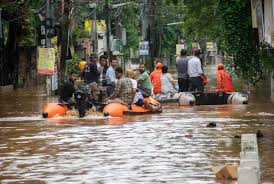
- 27 Mar 2025
In News:
The Parliament has passed the Disaster Management (Amendment) Bill, 2024, aiming to strengthen disaster response mechanisms.
Ministry: Home Affairs
Background
The Disaster Management Act, 2005 established a three-tier structure:
- National Disaster Management Authority (NDMA)
- State Disaster Management Authorities (SDMAs)
- District Disaster Management Authorities (DDMAs)
These bodies were responsible for disaster planning, mitigation, and response at national, state, and district levels respectively.
Key Amendments
1. Preparation of Disaster Management Plans
- Earlier: Executive Committees were responsible for preparing disaster plans.
- Now: NDMA and SDMA will directly prepare and approve national and state disaster management plans.
2. Expanded Functions of NDMA and SDMA
New responsibilities include:
- Periodic risk assessments, including risks from climate-related events.
- Technical guidance to lower-level authorities.
- Minimum standards of relief recommendations.
- Creation of disaster databases containing:
- Disaster risk profiles
- Fund allocations and expenditures
- Preparedness and mitigation strategies
- NDMA-specific roles:
- Assessment of state preparedness
- Post-disaster audits to evaluate response effectiveness
3. Urban Disaster Management Authorities (UDMAs)
- To be established in state capitals and municipal corporation areas.
- Composition:
- Chairperson: Municipal Commissioner
- Vice Chairperson: District Collector
- Additional members as per state government notification
- Responsible for urban disaster planning and implementation.
4. State Disaster Response Force (SDRF)
- States are empowered to establish SDRFs for specialized disaster response.
- Functions and service conditions to be defined by state governments.
5. Statutory Status to Key Committees
- National Crisis Management Committee (NCMC):
- Nodal body for major national disasters
- Chaired by the Cabinet Secretary
- High-Level Committee (HLC):
- Sanctions financial assistance to states
- Chaired by the concerned Union Minister
6. NDMA Staffing and Appointments
- NDMA can determine the number and type of officers and staff.
- Can appoint experts and consultants with prior central government approval.
Rationale Behind the Amendment
- Climate Change: Increased frequency of extreme weather events necessitates proactive strategies.
- Decentralization Gaps: States faced implementation challenges under the 2005 Act.
- Institutional Strengthening: Clearer roles for national and sub-national bodies.
- Technology and Data Integration: Emphasis on real-time data and performance audits.
Key Concerns and Criticism
- Centralization of Power:NDMA’s enhanced role may reduce state autonomy in disaster response.
- Overlap with State Authority:Potential encroachment on state disaster planning and fund utilization.
- Delayed Relief via NDRF:Increased central oversight may slow localized relief efforts.
- Omission of Emerging Threats:Excludes disasters like heatwaves from official definitions.
- Lack of State-Specific Relief Funds:Demand for region-focused financial provisions by states like Bihar.
Way Forward
- Ensure Federal Balance: Maintain cooperation between Centre and states.
- Update Definitions: Include climate-induced disasters like heatwaves.
- Transparent Funding Mechanism: Clear protocols for fund allocation and usage.
- Empower Local Bodies: Strengthen DDMAs and UDMAs through training and resources.
- Institutional Audits: Regular post-disaster audits to enhance future readiness.
FAO’s 3rd Report on the State of the World’s Plant Genetic Resources for Food and Agriculture (2025)
- 27 Mar 2025
In News:
The diversity of plant genetic resources for food and agriculture was under growing threat as despite 6,000 plant species cultivated, 60 per cent of the global crop production was alarmingly dependent on just nine crops, an important report by the United Nations Food and Agriculture Organization (FAO).
Key Highlights:
- Released by:Food and Agriculture Organization (FAO), under the Commission on Genetic Resources for Food and Agriculture (CGRFA-20).
- Crop Dependency & Diversity:
- 60% of global crop production is dependent on just 9 crops:Sugarcane, Maize, Rice, Wheat, Potatoes, Soybeans, Oil Palm Fruit, Sugar Beet, Cassava.
- Though 6,000 plant species are cultivated globally, there is a rising loss of genetic diversity, increasing vulnerability to climate shocks and food insecurity.
- Farmers’ Varieties / Landraces (FV/LRs):
- Traditional crop varieties adapted to local conditions, offering greater resilience to climate, pests, and diseases.
- Globally, 6% of FV/LRs are threatened; this figure exceeds 18% in some regions like Southern Africa, the Caribbean, and Western Asia.
- In India, over 50% of FV/LRs across five agro-ecological zones are at risk of extinction.
- Conservation Efforts
- In-situ (on-farm): Around 35 million hectares in 51 countries are under cultivation with FV/LRs.
- 42% of plant taxa are threatened at species or varietal level.
- Ex-situ (off-farm):
- Over 5.9 million accessions preserved globally.
- Many stored in the Svalbard Global Seed Vault.
- Conservation is constrained by funding, political support, infrastructure, and skilled personnel shortages.
- In-situ (on-farm): Around 35 million hectares in 51 countries are under cultivation with FV/LRs.
India-Specific Initiative
- Seed Hub Initiative (2016) by the Ministry of Agriculture:
- Aimed at promoting high-yielding varieties (HYVs) of pulses.
- Resulted in increased production from 14.76 million tonnes (2007–08) to 24.42 million tonnes (2020–21).
Impact of Climate Change
- Increasing frequency of extreme weather events threatens crop diversity.
- Countries lack mechanisms to assess disaster impacts on crop genetics.
- Post-disaster germplasm distribution often suffers due to poor seed adaptation to local agro-climatic and cultural contexts.
Key Challenges
- Genetic erosion due to monoculture, urbanization, and climate stress.
- Underfunded gene banks and weak institutional capacity.
- Lack of trained plant genetic experts and documentation gaps.
- Limited access to locally adapted seeds, especially post-disaster.
Way Forward
- Integrate in-situ and ex-situ conservation with community participation.
- Enhance funding and explore public-private partnerships.
- Build capacity in taxonomy, plant breeding, and genebank management.
- Promote participatory breeding with farmers and Indigenous communities.
- Strengthen policy support for crop diversification and climate-resilient agriculture.
About CGRFA
- Established: 1983 by FAO.
- Mandate: Only intergovernmental body focusing on sustainable use of agricultural biodiversity.
- Membership: 179 countries + European Union.
- Major Achievement:Instrumental in adoption of International Treaty on Plant Genetic Resources for Food and Agriculture (ITPGRFA), 2001.
Abolition of Equalisation Levy on Online Advertisements
- 26 Mar 2025
In News:
The Indian government has proposed to abolish the Equalisation Levy (digital tax) on online advertisements, effective April 1, 2025. This move is set to benefit digital advertisers on platforms like Google, Meta (formerly Facebook), and X (formerly Twitter), reducing their tax burden.
Overview of Equalisation Levy
- Introduction:
- The Equalisation Levy was introduced by the Finance Act of 2016. Its primary objective was to tax foreign digital service providers (such as Google, Meta, etc.) for income generated from digital transactions in India, ensuring these businesses contribute fairly to India’s tax system, despite having no physical presence.
- Coverage:
- Initially, the levy applied to online advertising services, imposing a 6% tax on payments made to non-resident providers. This was later expanded in 2020 to include e-commerce transactions, imposing a 2% levy on revenues from e-commerce operations. The e-commerce levy was abolished in August 2024.
- Conditions: The levy is applicable if:
- The payment is made to a non-resident service provider.
- The annual payment to the service provider exceeds Rs. 1 lakh in a financial year.
- Exclusions:
- If the non-resident service provider has a permanent office in India or if the income qualifies as royalties or technical services fees, it is not subject to the levy.
- Transactions under Rs. 1 lakh or involving exempt income under Section 10(50) are not taxed under the Equalisation Levy.
Key Reasons for Abolishing the Equalisation Levy
- Improved Tax Relations with the US: The levy has been a point of contention, particularly with the US, which threatened retaliatory tariffs. The move to abolish the 6% levy is seen as a step to improve trade relations and avoid escalation of trade disputes.
- Simplification of Tax Laws: Experts believe that removing the levy aligns with India’s broader efforts to simplify and streamline its tax legislation, making it easier for digital service providers to operate within the country.
- Addressing Global Concerns: The proposal to remove the levy is also in response to concerns raised by partner nations, like the US, about the unilateral nature of the tax. This step aims to reduce friction and maintain smoother diplomatic and trade ties.
Implications of the Abolition of the Equalisation Levy
- Reduced Costs for Advertisers: The removal of the 6% tax will lower the financial burden on advertisers in India who use platforms like Google, Meta, and X. This is expected to encourage more investment in digital advertising and benefit the broader digital economy.
- Enhanced Competitiveness: By removing the levy, India aims to create a more level playing field for both domestic and foreign companies involved in digital advertising, fostering fairer competition.
- Impact on International Relations: The decision could help defuse trade tensions, particularly with the US, and might avoid reciprocal tariffs that could affect Indian companies operating internationally.
- Tax Revenue Implications: While the abolition may result in short-term revenue loss from the digital services sector, it is anticipated that the long-term benefits from increased digital advertising spending and improved international relations will outweigh the initial loss.
Future Outlook
- Monitoring and Adjustments: While the government has moved to abolish the Equalisation Levy, experts suggest that further monitoring and analysis of digital taxation might be required, especially considering global trends and the evolving digital economy. The impact of this abolition on India’s digital tax landscape will need to be observed closely.
- Diplomatic Measures: Along with the abolition of the levy, the government continues to pursue diplomatic efforts to ensure fair trade practices and avoid potential retaliatory measures by foreign nations.
Permafrost Degradation in the Kashmir Himalayas
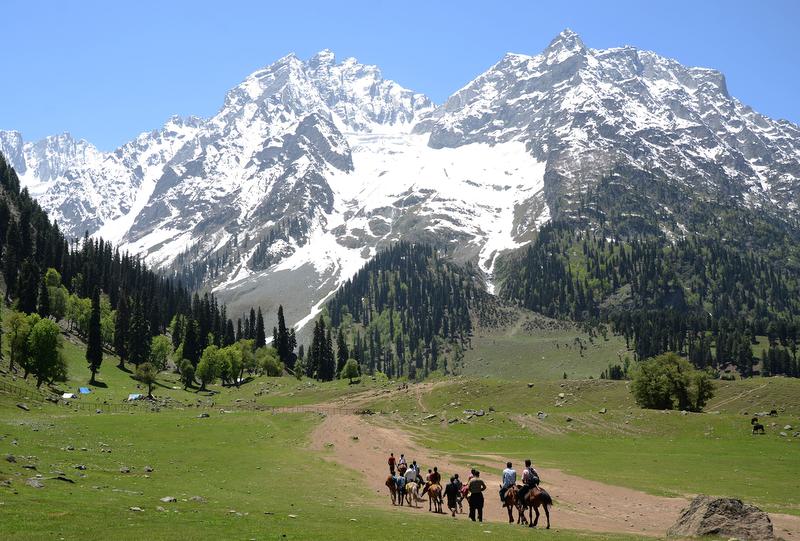
- 26 Mar 2025
In News:
Permafrost, the ground that remains frozen for at least two years, has long been a critical feature in high-altitude regions like the Kashmir Himalayas. Recent studies have highlighted that melting permafrost is emerging as a significant environmental threat, with the potential to disrupt both ecological systems and infrastructure in the region.
Key Findings of Recent Studies
- Extent of Permafrost: Permafrost covers 64.8% of Jammu & Kashmir (J&K) and Ladakh, with 26.7% being continuous, 23.8% discontinuous, and 14.3% sporadic.
- Regional Distribution: Ladakh has the highest concentration of permafrost (87%), while areas like the Shigar Valley and Siwaliks have no permafrost.
- Impact on Infrastructure: Permafrost degradation threatens key infrastructure, including roads, settlements, and hydropower projects. Approximately 193 km of roads, 2,415 households, and eight hydropower projects are at risk due to thawing permafrost.
- Glacial Lake Outburst Floods (GLOFs): Permafrost thaw increases the likelihood of GLOFs, as seen in recent events like the 2021 Chamoli disaster and the 2023 South Lhonak GLOF. These floods, triggered by the instability of glacial lakes formed by melting ice, can cause significant destruction.
Environmental Impacts of Permafrost Thawing
- Carbon Release: As permafrost melts, it releases stored organic carbon, including methane, a potent greenhouse gas that exacerbates climate change.
- Hydrological Changes: Thawing permafrost can alter river flow and groundwater availability, impacting water resources for local communities and ecosystems.
- Geological Instability: The breakdown of permafrost leads to landslides and slope instability, posing risks to both natural landscapes and human settlements.
Factors Contributing to Permafrost Degradation
- Global Warming: Rising surface temperatures are the primary driver of permafrost thaw.
- Human Activities: Construction activities, including road-building, dam construction, and real estate development, disturb the stability of permafrost. Additionally, deforestation and land-use changes increase the exposure of permafrost to solar radiation, accelerating its degradation.
- Natural Events: Earthquakes and natural processes, like rock-ice avalanches, also contribute to the destabilization of permafrost.
Risks to Local Communities and Infrastructure
- Vulnerable Regions: Thousands of households and critical infrastructure in permafrost-rich areas, such as Ladakh, are at risk due to permafrost thawing. Military and strategic infrastructure, including roads vital for connectivity, may face serious disruptions, compromising national security.
- Glacial Lake Outburst Floods (GLOFs): The melting of glaciers can lead to the formation of proglacial lakes, increasing the risk of GLOFs. In J&K, 332 such lakes have been identified, with 65 showing significant flood risks. GLOFs are a major threat to downstream communities and infrastructure.
Way Forward: Mitigating Risks
- Integrated Planning: Future infrastructure development, especially roads and hydropower projects, should incorporate data on permafrost zones. Risk-sensitive land-use planning and construction methods must be adopted to minimize environmental damage.
- Enhanced Monitoring: Remote sensing technologies, including satellite-based monitoring and ground-based LiDAR systems, should be employed to track permafrost degradation and associated environmental changes more effectively.
- Comprehensive Environmental Assessments: Environmental Impact Assessments (EIAs) must be strengthened to include the risks of permafrost thawing, particularly in relation to GLOFs, landslides, and groundwater depletion. This is crucial for ensuring that development projects in these regions do not exacerbate the environmental risks posed by permafrost degradation.
Targeted Species Conservation
- 26 Mar 2025
In News:
A major global study published in PLOS Biology (March 2025) has reaffirmed that targeted species-specific conservation measures are critical in reversing biodiversity loss and preventing extinctions. Despite the ongoing biodiversity crisis, where six times more species are declining than improving, the study found that where conservation efforts were applied, results were overwhelmingly positive.
Analyzing over 67,000 animal species from the IUCN Red List, researchers from institutions including the University of Cambridge, IUCN, and BirdLife International discovered that 99.3% of species that improved in threat status since 1980 had benefitted from conservation interventions, such as habitat protection, reintroduction, breeding programmes, and legal protections. Of the 969 species with globally increasing populations, 78.3% were under active conservation.
Notable global success stories include:
- Iberian Lynx: Rebounded from a few hundred to several thousand through breeding and habitat restoration.
- K?k?p? (New Zealand parrot): Revived via intensive monitoring and predator control.
- European Bison: Successfully reintroduced in Eastern Europe after extinction in the wild.
- Marine species such as humpback and blue whales also recovered after international moratoriums on whaling.
Island ecosystems like New Zealand, Mauritius, and the Seychelles showed the highest concentration of species recovery, while decline hotspots included the Tropical Andes, Sumatra, Malaysia, and Borneo.
Despite these successes, the study cautions that since 1980, 1,220 species of birds, mammals, and amphibians have deteriorated in Red List status compared to only 201 species that improved.
Causes include habitat loss, pollution, overexploitation, climate change, invasive species, and disease.The study called for landscape-scale conservation and ambitious implementation of Goal A of the Kunming-Montreal Global Biodiversity Framework to halt extinction risk and restore resilient populations.
India’s Species-Specific Conservation Efforts
India has adopted a multi-pronged species-specific conservation approach, primarily under the Integrated Development of Wildlife Habitats (IDWH), 2008, which continues under the 15th Finance Commission (2021–26). The scheme focuses on critically endangered species through captive breeding, habitat restoration, and community participation.
Key initiatives include:
- Species Recovery Programme: Prioritizes 22 species (16 terrestrial and 6 aquatic) for focused conservation.
- Project Tiger (1973) and Project Elephant (1992): Flagship conservation efforts for apex species.
- Project Crocodile: Initiated post-Wildlife (Protection) Act, 1972, supported by the UN. Saltwater crocodiles in Bhitarkanika increased from 95 (1975) to 1,811.
- Sea Turtle Conservation Project (1999): Focuses on Olive Ridley Turtles, listed as Vulnerable (IUCN), Schedule I (WLPA), and Appendix I (CITES).
- Vulture Action Plan 2020–25: Aims to eliminate diclofenac use and protect food sources for vultures. India's first Vulture Conservation and Breeding Centre (VCBC) was set up in Pinjore, Haryana.
- Indian Rhino Vision 2020: Increased the Greater One-Horned Rhinoceros population in Kaziranga National Park to over 2,600 (2022).
- Project Cheetah (2022): Reintroduces cheetahs extinct in India since 1952, with cheetahs from Namibia and South Africa released in Kuno National Park. India saw its first wild cheetah birth in 2023 after 75 years.
- Maharashtra’s Pangolin Action Plan: The first dedicated plan for pangolin conservation. Pangolins are listed under Schedule I of the WLPA, receiving the highest level of protection.
Revival of Vikramshila University
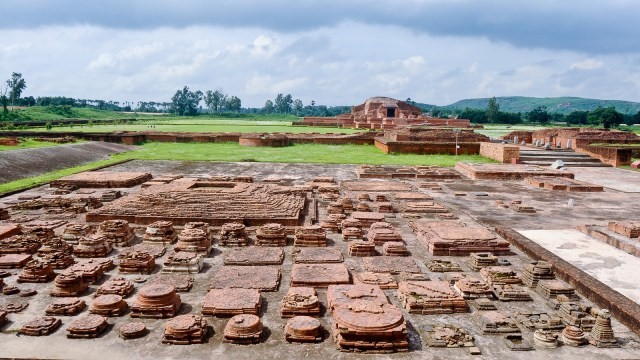
- 26 Mar 2025
In News:
Following the revival of Nalanda University, another historic centre of learning—Vikramshila University in Bihar—is now set for rejuvenation. The Archaeological Survey of India (ASI) began developing the site in December 2023 to boost heritage tourism. Simultaneously, the Bihar government has earmarked 202.14 acres of land in Antichak village, Bhagalpur district, for setting up a Central University at the ancient site.
The revival project was approved by the Central Government in 2015 with a sanctioned budget of ?500 crore. However, work was delayed due to issues in land acquisition. With recent approval of ?87.99 crore for land procurement and the identification of suitable land, the project has regained momentum. The site is located about 3 km from the ancient ruins of the original university.
Historical Background:
- Vikramshila University was founded in the late 8th or early 9th century AD by King Dharmapala of the Pala Dynasty as a response to declining academic standards at Nalanda.
- Situated along the banks of the Ganges in eastern India, Vikramshila emerged as a major hub of Tantric Buddhism (Vajrayana) and occult studies, distinguishing itself from the broader curriculum of Nalanda.
- During its peak, Vikramshila housed over 1,000 students and 100 teachers, many of whom came from other parts of India and abroad.
- The university became renowned for its scholarship in theology, logic, metaphysics, grammar, philosophy, and especially tantric studies, which were popular in both Buddhism and Hinduism during that era. Among its most prominent scholars was AtisaDipankara, who played a key role in the spread of Buddhism to Tibet.
- The university featured a central cruciform brick stupa surrounded by 208 monk cells, arranged symmetrically on all four sides. A major architectural marvel of the site is its library, which had an innovative cooling system where water from a nearby reservoir was used to preserve manuscripts. This reflects the advanced engineering and scholarly focus of the institution.
- Although Nalanda and Vikramshila were separate entities, they often collaborated and shared scholars under the patronage of King Dharmapala. At one point, Vikramshila even held administrative authority over Nalanda.
Decline:
Vikramshila flourished for nearly four centuries before being destroyed around 1203 AD during the invasions of Muhammad Bin Bakhtiyar Khalji, the same event that marked the end of Nalanda University. The decline was also contributed to by the waning influence of Buddhism in India and the rise of Hinduism.
Recent Initiatives:
The ASI has divided the Vikramshila ruins into grids for careful excavation and preservation. A museum at the site displays several important antiquities, including sculptures of Buddhist and Hindu deities like Avalokiteshvara, Loknath, Surya, Vishnu, Ganesh, and more. Restoration work is also underway on NH-80, which connects Vikramshila to Bhagalpur city, about 50 km away.
Indian Ocean Ship (IOS) Sagar & AIKEYME
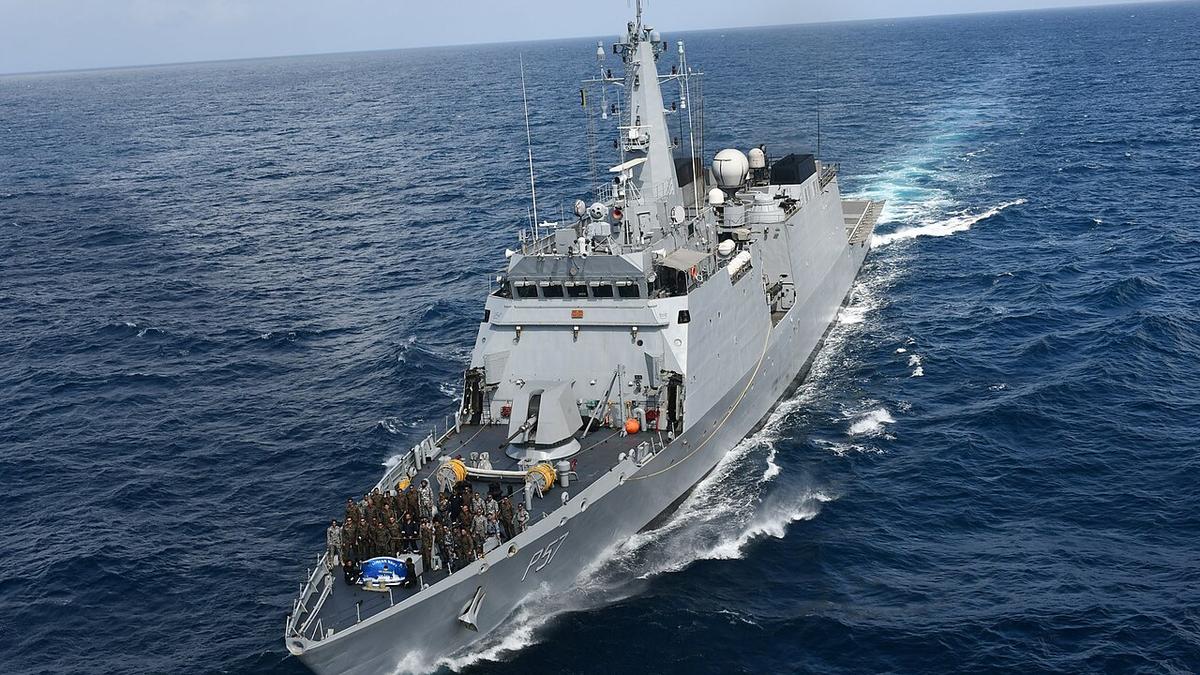
- 26 Mar 2025
In News:
India’s Maiden India-Africa Naval Exercise: Indian Ocean Ship (IOS) Sagar & AIKEYME.
Indian Ocean Ship (IOS) Sagar
- Launched: April 5 – May 8, 2025
- Vessel: INS Sunayna (Offshore Patrol Vessel)
- Objective: Maritime security cooperation in the Southwest Indian Ocean Region (IOR)
- Participants:India + 9 African & IOR nations:Comoros, Kenya, Madagascar, Maldives, Mauritius, Mozambique, Seychelles, Sri Lanka, and South Africa
- Activities:
- Port Visits: Dar-es-Salaam (Tanzania), Nacala (Mozambique), Port Louis (Mauritius), Port Victoria (Seychelles), Male (Maldives)
- Joint EEZ Surveillance: With Tanzania, Mozambique, Mauritius, and Seychelles
- Training: Personnel from participating countries trained at Indian naval institutions in Kochi on operations, navigation, and maritime security
AIKEYME (Africa-India Key Maritime Engagement)
- Meaning: "Unity" (from Sanskrit)
- Type: First Multilateral Naval Exercise between India and African nations
- Duration: Six days in mid-April 2025
- Co-hosts: Indian Navy and Tanzania People's Defence Force (TPDF)
- Inauguration: By Indian Defence Minister at Dar-es-Salaam, Tanzania
- Participants:India + 10 African nations:Comoros, Djibouti, Eritrea, Kenya, Madagascar, Mauritius, Mozambique, Seychelles, South Africa, Tanzania
- Exercise Phases:
- Harbour Phase:
- Table-top exercises
- Command post exercises on piracy and information sharing
- Training in Seamanship and Visit, Board, Search & Seizure (VBSS)
- Sea Phase:
- Maritime security drills
- Search and Rescue (SAR)
- Small arms firing
- Helicopter operations
- Harbour Phase:
Strategic Context & Broader Framework
SAGAR (Security and Growth for All in the Region) – 2015
- Aim: Promote a free, open, inclusive and secure Indo-Pacific
- Key Pillars:
- Countering China's influence in the region
- Enhancing maritime security (anti-piracy, anti-terrorism)
- Capacity building in disaster management and infrastructure
- Promoting regional economic and connectivity projects
MAHASAGAR Initiative
- Announced by PM Modi in Mauritius
- Stands for Advancement for Security Across the Regions
- Focuses on bolstering maritime security partnerships across the Indian Ocean
Key Supporting Indian Initiatives
- Mission SAGAR: Delivered COVID-19 aid to Indian Ocean nations
- Vaccine Maitri: Supplied vaccines to neighbours like Maldives and Bhutan
- South Asia Satellite: Enhanced communication & disaster response
- Kaladan Multi-Modal Transit Project: Boosted India-Myanmar-Southeast Asia connectivity
India to Host FATF Private Sector Collaborative Forum 2025 in Mumbai
- 25 Mar 2025
In News:
- India will host the FATF Private Sector Collaborative Forum (PSCF) 2025 in Mumbai from March 25-27, 2025. This event will focus on global priorities such as payment transparency, financial inclusion, and the digital transformation of financial systems.
- The forum will be a critical platform for addressing the evolving challenges of money laundering and terrorist financing through the use of digital tools and enhanced transparency.
Key Agenda
The discussions at PSCF 2025 will revolve around tackling contemporary financial crimes, including those linked to cryptocurrency-related laundering. Key topics will include:
- Strengthening Anti-Money Laundering (AML) and Counter-Terrorist Financing (CFT) compliance mechanisms.
- Promoting financial inclusion through risk-based supervision of regulated entities.
- Enhancing transparency in beneficial ownership and using digital tools to bolster AML/CFT measures.
- Addressing emerging risks, including terrorist financing and proliferation financing.
The forum will also assess how the private sector can enhance information-sharing practices to address these threats more effectively.
About FATF
The Financial Action Task Force (FATF), established in 1989 during the G7 Summit in Paris, is an intergovernmental body that sets international standards to combat money laundering and terrorist financing. The FATF’s mission is to develop policies, establish guidelines, and promote global cooperation to mitigate the financial risks associated with these crimes.
- Headquarters: Paris, France.
- Membership: FATF has 39 member countries, including major economies such as the United States, India, China, Saudi Arabia, Germany, and theEuropean Union.
- Regional Bodies: In addition to its direct members, FATF affiliates over 180 countries through FATF-Style Regional Bodies (FSRBs) like the Asia Pacific Group (APG) and the Eurasian Group.
- FATF Recommendations are recognized as the global standard for AML/CFT measures.
FATF evaluates countries' efforts to comply with these standards, providing assessments and promoting policy changes to counteract financial crimes. Countries that fail to comply may be placed on the grey list or blacklist.
FATF Grey and Black Lists
Countries that fail to meet FATF standards are placed on one of two lists:
- Black List: Countries known as Non-Cooperative Countries or Territories (NCCTs), which directly support terrorist financing and money laundering. North Korea, Iran, and Myanmar are currently on this list.
- Grey List: Countries considered at risk of supporting financial crimes but not yet fully engaging in those activities. Being on the grey list serves as a warning, with the risk of moving to the blacklist if improvements are not made.
Countries on the blacklist face severe international sanctions, including restrictions on financial aid and economic interactions from organizations like the IMF, World Bank, and Asian Development Bank.
India's Role in FATF
India became a member of FATF in 2010 and has made significant strides in improving its AML/CFT frameworks. In 2024, FATF acknowledged India’s efforts towards anti-money laundering and countering terrorist financing, placing it in the "regular follow-up" category for continued compliance.
The upcoming PSCF 2025 will be a milestone in India’s ongoing commitment to global financial security, as it seeks to enhance international collaboration and discuss innovative ways to address evolving threats in financial crimes.
Global Environmental Data Strategy (GEDS)
- 25 Mar 2025
In News:
- The Global Environmental Data Strategy (GEDS), spearheaded by the United Nations Environment Programme (UNEP), is a comprehensive framework designed to address the triple planetary crises of climate change, pollution, and biodiversity loss.
- GEDS aims to leverage high-quality, accessible environmental data to support informed decision-making, foster innovative digital solutions, and promote sustainable development.
- The strategy is currently under development, with UNEP working to finalize it by December 2025. It emphasizes overcoming barriers such as data fragmentation, lack of interoperability, and limited access, which hinder the effective use of environmental data.
Key Focus Areas of GEDS
The GEDS framework is built around five key pillars that focus on overcoming challenges and unlocking the potential of environmental data:
- Data Quality and Provenance:
- Establishing standardized frameworks and mechanisms to classify and ensure the accuracy of environmental data.
- Focusing on data quality and developing systems to trace its origin (provenance).
- Data Governance:
- Promoting ethical and sustainable methodologies for managing environmental data.
- Developing governance models to ensure data is managed in a transparent and responsible way.
- Data Interoperability:
- Federating global and thematic data standards to allow seamless data sharing and integration.
- Ensuring that data across different platforms and systems can communicate with each other, facilitating better collaboration.
- Inclusive Data Access:
- Ensuring open, affordable, and machine-readable access to environmental data for all stakeholders.
- Addressing issues related to data discoverability and making data AI-ready to foster innovative solutions.
- Capacity-Building:
- Enhancing the skills and knowledge needed for effective data collection, governance, and use.
- Focusing on strengthening global initiatives, particularly in the Global South, to improve data management capabilities and foster inclusive participation.
Significance of GEDS
- Tackling Environmental Crises: GEDS provides a data-driven approach to addressing the challenges of climate change, pollution, and biodiversity loss, aligning with global efforts to achieve the UN Sustainable Development Goals (SDGs).
- Supporting Informed Decision-Making: By ensuring the availability of high-quality environmental data, GEDS helps governments, organizations, and communities make evidence-based decisions that are crucial for environmental sustainability.
- Fostering Innovation: The strategy facilitates the development of AI and data analytics tools to create innovative solutions for environmental management and protection.
- Global Collaboration: By promoting international cooperation and sharing of environmental data, GEDS aims to improve global collaboration to combat environmental challenges.
Urban Heat Island Effect in Hyderabad
- 25 Mar 2025
In News:
The Telangana Socio-Economic Outlook 2025 highlights a concerning rise in night-time temperatures in Hyderabad, attributed to the Urban Heat Island (UHI) effect. This growing urban microclimatic issue has critical public health and environmental implications.
What is Urban Heat Island (UHI)?
- Definition: UHI is a climatic phenomenon where urban areas record significantly higher temperatures than surrounding rural or peri-urban regions, particularly at night.
- Cause: Result of urbanization and human activities that alter land surfaces and trap heat.
Key Factors Contributing to UHI
- Reduced green cover: Shrinking vegetation limits natural cooling via shade and evapotranspiration.
- High density of concrete structures: Buildings and roads absorb solar radiation during the day and release heat slowly at night.
- Urban layout: Tall buildings and narrow streets trap warm air, reducing air circulation.
- Anthropogenic heat: Emissions from vehicles, air conditioners, and industries contribute to localized warming.
- Surface characteristics: Dark tarred roads absorb more heat and release it at night, worsening night-time UHI.
Hyderabad Case Study: Telangana Socio-Economic Outlook 2025
- Temperature Difference:
- Night-time: Core city is 1.9°C warmer than surrounding peri-urban and outer zones.
- Daytime: Interestingly, the core is 0.7°C cooler due to shade from tall buildings.
- Peak UHI Season: March to August.
- Most Affected Zones: High-rise, concrete-dense city centers with low vegetation.
Health Impacts of UHI
According to medical experts:
- Physical Effects:
- Heat exhaustion & heat strokes
- Dehydration, skin issues
- Cardiovascular and kidney stress
- Vulnerable Groups: Elderly, children, and those with pre-existing conditions.
- Biological Mechanism: Prolonged exposure increases pro-inflammatory cytokines, leading to immune suppression and chronic fatigue.
- Mental Health: UHI contributes to sleep disturbances, psychological stress, and anxiety.
Government Response
- Clean and Green Energy Policy 2025: Telangana aims to promote cooler, greener cities.
- Recommended Actions:
- Interdisciplinary collaboration among urban planners, healthcare professionals, and community experts.
- Urban design incorporating green infrastructure and heat-resilient materials.
World Water Day 2025

- 25 Mar 2025
In News:
Marking World Water Day, the Ministry of Jal Shakti, in collaboration with the Ministry of Environment, Forest & Climate Change and the Government of Haryana, launched the much-anticipated sixth edition of Jal Shakti Abhiyan: Catch the Rain - 2025 in Panchkula, Haryana.
World Water Day 2025
- Observed On: 22nd March 2025
- 2025 Theme: ‘Glacier Preservation’
- Global Context: Declared by the United Nations General Assembly in 1993, conceptualized at the 1992 Rio Earth Summit.
- Linked SDG: Sustainable Development Goal 6 (SDG-6) – Clean Water and Sanitation for All by 2030.
- Purpose: To raise global awareness on water conservation and promote sustainable water use.
India's Observance: Launch of Jal Shakti Abhiyan – Catch the Rain 2025
- Launched by: Ministry of Jal Shakti, in collaboration with Ministry of Environment, Forest and Climate Change (MoEFCC) and Government of Haryana.
- Launch Venue: Panchkula, Haryana (first time outside Delhi).
- Theme: “????????????????: ??????????????” (People’s Action for Water Conservation – Towards Intensified Community Connect).
- Focus Areas:
- Rainwater harvesting
- Groundwater recharge
- Community-led water conservation
- Ecological restoration (forests, rivers, springs)
Key Campaigns & Initiatives
Jal Shakti Abhiyan: Catch the Rain 2025 (JSA:CTR)
- Targeted Districts: 148 water-stressed districts across India.
- Tagline: “Catch the Rain where it falls, when it falls.”
- Objective: Promote localized water conservation through people’s participation and decentralized planning.
“Jal-Jangal-Jan” Abhiyan
- Aim: Restore ecological connectivity between water, forests, and communities.
- Collaborators: MoEFCC and Jal Shakti Ministry.
- Tools Used: Awareness videos, AV content, best practice compilations.
State-Level Innovations: Haryana Model
- Launched:
- Mukhyamantri Jal Sanchay Yojana – Enhancing water harvesting through community participation.
- Water Resources Atlas – Scientific mapping of water availability.
- Online Canal Water Management System – Real-time irrigation data for efficiency.
- E-booklet on Integrated Water Resources Management.
- Infrastructure Projects under SBM-G & JSA:
- Community Sanitary Complexes
- Solid & Liquid Waste Management
- Gobardhan (Biogas) Projects
- Borewell Recharge Systems
- Micro-irrigation and Rainwater Harvesting Projects
Key Government Schemes Related to Water
- Jal Shakti Abhiyan (JSA) – Time-bound, mission-mode campaign for water conservation.
- Atal Bhujal Yojana – Participatory groundwater management in critical areas.
- AMRUT 2.0 – Urban water supply and sewerage services improvement.
India and the Indian Ocean Rim Association (IORA)
- 25 Mar 2025
In News:
Charting a route for IORA under India’s chairship
What is IORA?
The Indian Ocean Rim Association (IORA) is a regional inter-governmental organization established on 7 March 1997 to promote economic cooperation, regional integration, and sustainable development among countries bordering the Indian Ocean. The idea was initiated during Nelson Mandela’s visit to India in 1995, leading to the Indian Ocean Rim Initiative (IORI).
- Membership: 23 Member States and 10 Dialogue Partners
- Geographical Reach: Connects Asia, Africa, and Oceania via the Indian Ocean
- Secretariat: Based in Mauritius
Importance of the Indian Ocean Region (IOR)
- Geopolitical Relevance: Subset of the Indo-Pacific but with unique characteristics
- Demographics: Home to two-thirds of the global population
- Economic Significance:
- Handles 75% of global trade volume
- Accounts for 50% of global daily oil consumption
- Generates USD 1 trillion worth of goods/services annually
- Intra-IORA trade: USD 800 billion (2023)
India’s Chairship of IORA (2025–27)
India is set to take over as Chair of IORA in November 2025 (currently Vice-Chair). It aims to enhance the organization’s governance and effectiveness by focusing on:
- Strengthening IORA’s Budget:
- Promote public-private partnerships
- Encourage investments from key maritime industries (shipping, oil & gas, marine tourism)
- Learn from other models like the Indian Ocean Commission ($1.3 billion budget for 2020–25)
- Technology Integration:
- Adopt digital tools for data governance
- Enable faster policy analysis and decision-making
- Reduce inefficiencies in record-keeping
- Maritime Education and Capacity Building:
- Collaborate with academic and research institutions
- Launch maritime-ready and interdisciplinary courses (e.g., marine accounting)
- Develop a skilled workforce to support the blue economy
Strategic Synergy with India’s SAGAR Vision
India’s Security and Growth for All in the Region (SAGAR) vision aligns with IORA’s objectives:
- Enhancing maritime safety and security
- Fostering economic growth and sustainable development
- Promoting regional peace and cooperation
India is expected to leverage its diplomatic ties with member states and encourage collaborative problem-solving across the region.
RBI’s 6th Remittance Survey (2023–24)
- 24 Mar 2025
In News:
India remains the world’s top recipient of remittances, with total inward remittances doubling from USD 55.6 billion in 2010–11 to USD 118.7 billion in 2023–24, as per the Reserve Bank of India’s Sixth Round of the Remittances Survey.
Shift in Sources of Remittances
- A significant trend in 2023–24 is the growing dominance of Advanced Economies (AEs) over traditional Gulf sources.
- The United States emerged as the largest contributor with a 27.7% share, followed by the United Arab Emirates (UAE) at 19.2%.
- AEs including the UK, Singapore, Canada, and Australia now account for over 50% of India’s total remittance inflows.
- The UK’s share increased notably from 3.4% (2016–17) to 10.8% (2023–24).
- Australia contributed 2.3%, reflecting rising skilled migration.
- The Gulf Cooperation Council (GCC) countries (UAE, Saudi Arabia, Kuwait, Qatar, Oman, Bahrain) collectively contributed 38%, a decline from 47% in 2016–17.
Reasons for the Shift
- Robust Job Markets in AEs: High-paying jobs for skilled Indian migrants in the US, UK, Canada, and Australia.
- UK-India Migration and Mobility Partnership (MMP) tripled Indian migration to the UK from 76,000 in 2020 to 250,000 in 2023.
- Favorable immigration policies in Canada (Express Entry) and Australia boosted skilled migration.
- Declining Opportunities in GCC:
- Post-pandemic return of Indian migrants and reduced demand for low-skilled labor due to automation and economic diversification.
- Nationalization policies (e.g., Nitaqat in Saudi Arabia, Emiratization in UAE) favor local employment.
- Changing Migration Patterns:
- Southern states (Kerala, Tamil Nadu, Andhra Pradesh, Telangana) now prefer AEs due to higher education levels.
- Northern states (Uttar Pradesh, Bihar, Rajasthan) still send migrants to GCC, but limited by lower skill levels.
- Rise in Education-Driven Migration:
- Many Indian students pursue higher education abroad and stay back for employment.
- Indian students abroad: Canada (32%), US (25.3%), UK (13.9%), Australia (9.2%).
State-Wise Remittance Distribution (2023–24)
- Maharashtra: 20.5%
- Kerala: 19.7%
- Tamil Nadu: 10.4%
- Telangana: 8.1%
- Karnataka: 7.7%
- Notable increases observed in Punjab and Haryana.
Mode of Transfers
- The Rupee Drawing Arrangement (RDA) remains the dominant channel.
- Other channels include direct Vostro transfers and fintech platforms.
- Digital transactions account for 73.5% of remittance flows.
Inner Line Permit (ILP)

- 24 Mar 2025
In News:
The Inner Line Permit (ILP) system plays a significant role in regulating entry into certain states of India's Northeast. Originally derived from the Bengal Eastern Frontier Regulation (BEFR) of 1873, the ILP aims to protect indigenous communities and preserve their cultural identity by regulating the movement of non-residents into restricted areas. This system requires Indian citizens who are not permanent residents of these states to obtain an ILP to enter and stay in these areas for a limited period.
Currently, four states—Arunachal Pradesh, Nagaland, Mizoram, and Manipur—require an ILP for entry. In recent years, the ILP system has become a topic of contention in Meghalaya, where local opposition to developmental projects, particularly railway expansion, has intensified.
What is the Inner Line Permit (ILP)?
The ILP is an official travel document issued by the respective state governments and regulates the entry of Indian citizens into restricted tribal areas. The system's primary aim is to safeguard indigenous communities from exploitation and prevent land alienation.
- Legal Basis: The Bengal Eastern Frontier Regulation (BEFR), 1873, introduced by the British, created an "Inner Line" to restrict the movement of outsiders. The Foreigners (Protected Areas) Order, 1958 and Foreigners (Restricted Areas) Order, 1963 further delineated areas where foreigners and Indian citizens from other states require special permits to enter.
- Difference Between ILP and PAP: The Inner Line Permit (ILP) applies to Indian citizens in certain northeastern states, while the Protected Area Permit (PAP) is for foreigners wishing to enter restricted areas, including parts of Arunachal Pradesh, Sikkim, Himachal Pradesh, J&K, and Rajasthan.
Current Status of Rail Connectivity in Meghalaya
Meghalaya has limited rail connectivity, with Mendipathar in North Garo Hills being the only operational railway station since 2014. Passenger services run daily between Mendipathar and Guwahati, and the station recently received its first freight shipment. However, several proposed railway projects in the state face significant opposition from local groups, particularly in the Khasi and Jaintia Hills.
The Northeast Frontier Railways (NFR) had planned three key projects in Meghalaya:
- Tetelia-Byrnihat Railway Line (21.5 km connecting Assam to Meghalaya)
- Byrnihat-Shillong Railway Line (108.76 km)
- Chandranathpur-Jowai Railway Line (connecting Assam to Jowai)
These projects are now at risk of being shelved due to local resistance, particularly from Khasi pressure groups such as the Khasi Students' Union (KSU).
Opposition to Railway Projects in Meghalaya
The opposition to these railway projects stems from fears of an influx of “outsiders” into the state, potentially threatening the cultural identity and livelihood of indigenous communities. The Khasi Students' Union (KSU) has been opposed to the extension of railway lines into the Khasi Hills since the 1980s, arguing that such projects would facilitate large-scale migration and overwhelm local populations. The group's concerns have now expanded to include other regions, such as the Jaintia Hills, where protests have emerged against the proposed Chandranathpur-Jowai line.
The KSU has long advocated for the introduction of the ILP system in Meghalaya to prevent non-residents from settling in the state. They argue that the ILP would serve as a safeguard against uncontrolled migration, offering a mechanism to regulate entry, especially at railway stations, where people can be monitored and restricted from staying beyond their designated period.
The KSUemphasized that while the group does not oppose railway development in principle, it seeks safeguards like the ILP to ensure that the state's indigenous communities do not become minorities.
Economic Considerations and Government Response
While the local opposition is strong, there is also significant support for railway connectivity, particularly from economic perspectives. Chief Minister Conrad Sangma has argued that improved rail connectivity would reduce logistical costs and facilitate the movement of goods, benefiting both the state's economy and its local entrepreneurs. Toki Blah, a political commentator, noted that railway expansion could lower the cost of goods, particularly in a state where much of the population depends on small-scale agriculture and service-based industries.
Additionally, representatives from the Garo Hills, another major tribal region in Meghalaya, have advocated for expanding existing rail links from Mendipathar to Baghamara in the South Garo Hills, citing the need for better transportation infrastructure.
Shaheed Diwas
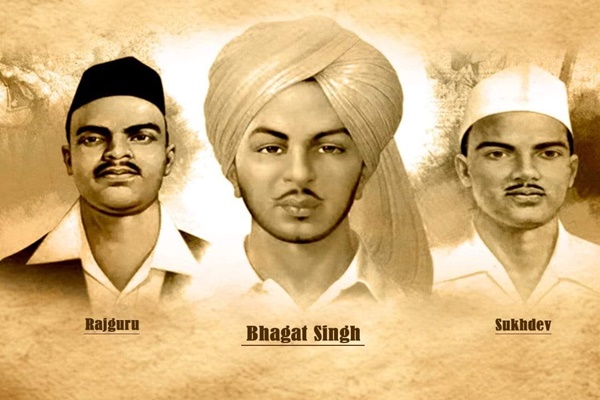
- 24 Mar 2025
In News:
On Shaheed Diwas (23rd March), the nation commemorates the supreme sacrifice of three iconic freedom fighters—Bhagat Singh, Shivaram Rajguru, and Sukhdev Thapar. Prime Minister Narendra Modi paid tribute to these martyrs, remembering their unwavering resolve and courageous efforts in the struggle for India's independence. This day marks the execution of these three revolutionaries by British colonial authorities in Lahore Jail in 1931.
Background of the Martyrs
The trio was convicted for their involvement in the 1928 Lahore Conspiracy Case, which revolved around the killing of J.P. Saunders, a British officer. The incident occurred after Saunders was mistakenly identified as Superintendent James Scott, who was blamed for the death of Lala Lajpat Rai during a protest against the Simon Commission. The execution of these freedom fighters on 23rd March 1931 became a symbol of their sacrifice for the cause of India’s freedom.
The three were members of the Hindustan Socialist Republican Association (HSRA), a revolutionary group that sought to overthrow British rule through armed struggle. Their fearless actions continue to inspire the nation to this day.
Brief Profiles of the Martyrs
- Bhagat Singh (1907–1931): Born in Punjab, Bhagat Singh was a prominent revolutionary who played a key role in the fight against British rule. He is remembered for his bold actions, such as the bombing of the Central Legislative Assembly in 1929, and his fearless stand against colonial oppression. His execution at the age of 23 became a catalyst for the freedom struggle.
- Shivaram Rajguru (1908–1931): Born in Maharashtra, Rajguru was a committed revolutionary who, along with Bhagat Singh, was involved in the assassination of J.P. Saunders. He was known for his dedication to the cause of armed resistance and his determination to fight colonial oppression. Rajguru was executed at the age of 23.
- Sukhdev Thapar (1907–1931): A key figure in mobilizing youth for the freedom struggle, Sukhdev was born in Punjab. He played a significant role in the activities of the HSRA and was instrumental in organizing protests and revolutionary activities. His execution, like that of his fellow revolutionaries, became a symbol of the ultimate sacrifice for India's freedom.
Financial Assistance for Promotion of Art and Culture
- 24 Mar 2025
In News:
The Ministry of Culture has implemented several schemes aimed at supporting the growth and preservation of India's rich art and cultural heritage. One of the key initiatives is the ‘Financial Assistance for Promotion of Art and Culture’ Scheme, a Central Sector Scheme that provides financial support to eligible cultural organizations across the country. Below is an overview of the scheme, its components, and eligibility criteria.
Eligibility Criteria for Organizations
To be eligible for assistance under this scheme, cultural organizations must meet the following criteria:
- Registered as a society, trust, or not-for-profit company for at least three years.
- Registered on the NGO Darpan Portal of NITI Aayog.
- Have a primary focus on cultural activities.
- Submit audited financial statements for the last three years.
- Have filed Income Tax returns during the last three years.
Sub-Components of the Scheme
The scheme consists of eight sub-components, each designed to support different aspects of art and culture across India.
- Financial Assistance to Cultural Organizations with National Presence
- Objective: To support large cultural organizations with a nationwide presence.
- Grant Amount: Up to Rs. 1 crore (may increase to Rs. 5 crore in exceptional cases).
- Cultural Function & Production Grant (CFPG)
- Objective: Provides financial aid for cultural events like seminars, conferences, research, workshops, festivals, exhibitions, and productions of dance, drama, and music.
- Grant Amount: Up to Rs. 5 lakh (may increase to Rs. 20 lakh in exceptional cases).
- Financial Assistance for the Preservation & Development of Cultural Heritage of the Himalayas
- Objective: To promote and preserve the cultural heritage of the Himalayan region, including Jammu & Kashmir, Himachal Pradesh, Uttarakhand, Sikkim, and Arunachal Pradesh.
- Grant Amount: Up to Rs. 10 lakh per year (may increase to Rs. 30 lakh in exceptional cases).
- Financial Assistance for the Preservation & Development of Buddhist/Tibetan Organizations
- Objective: To support Buddhist/Tibetan organizations, including monasteries, in preserving and developing Buddhist/Tibetan culture and traditions.
- Grant Amount: Up to Rs. 30 lakh per year (may increase to Rs. 1 crore in exceptional cases).
- Financial Assistance for Building Grants including Studio Theatres
- Objective: To provide financial support for creating cultural infrastructure, such as studio theatres, auditoriums, and rehearsal halls, along with providing essential facilities like lighting, acoustics, and sound systems.
- Grant Amount: Up to Rs. 50 lakh in metro cities and Rs. 25 lakh in non-metro cities.
- Financial Assistance for Allied Cultural Activities
- Objective: To assist in the creation of assets that enhance the audio-visual spectacle for live performances and cultural activities.
- Grant Amount:
- Audio: Up to Rs. 1 crore.
- Audio + Video: Up to Rs. 1.5 crore (includes 5 years of operation and maintenance costs).
- Intangible Cultural Heritage
- Objective: To safeguard and promote India’s intangible cultural heritage, supporting institutions, groups, and NGOs involved in relevant activities.
- Grant Amount: Varies based on specific activities.
- Domestic Festivals and Fairs
- Objective: To assist in organizing RashtriyaSanskritiMahotsavs (National Culture Festivals) across India, engaging artists and showcasing various cultural traditions.
- Grant Amount: Event-based assistance; Rs. 38.67 crore was released in the last three years for these events.
Implementation and Monitoring
The Ministry of Culture closely monitors the effective utilization of funds under this scheme through:
- Utilization Certificates and audited financial statements.
- On-site physical inspections to assess the progress and impact of the funded projects.
- Regular oversight ensures that the assistance is used for its intended purpose and meets the objectives of cultural promotion and preservation.
Support for Individual Artists and Cultural Research
In addition to the above schemes, the Ministry of Culture also supports individual artists and cultural researchers through the ‘Scheme of Scholarship and Fellowship for Promotion of Art and Culture’. This scheme includes the following components:
- Award of Scholarships to Young Artists (SYA)
- Objective: To support young artists aged 18-25 years in various cultural fields.
- Duration: 2 years.
- Eligibility: Applicants should have undergone at least 5 years of training under a recognized guru or institution.
- Award of Senior/Junior Fellowships
- Senior Fellowship: For individuals 40 years and above to support cultural research.
- Junior Fellowship: For individuals 25-40 years for cultural research.
- Up to 400 Fellowships are awarded annually.
- Tagore National Fellowship for Cultural Research
- Objective: To provide funding for cultural research under two categories: Tagore National Fellowship and Tagore Research Scholarship.
- Selection: Fellows and scholars are selected by the National Selection Committee.
- Project Grants for Research in Performing Arts
- Objective: To provide financial assistance to individuals conducting research in performing arts.
Eurasian Goshawk sighting at Tansa Wildlife Sanctuary

- 24 Mar 2025
In News:
A significant wildlife discovery has been made at Tansa Wildlife Sanctuary, Maharashtra, where the Eurasian goshawk, a large bird of prey, was spotted for the first time. This marks the first documented instance of the Eurasian goshawk in the sanctuary, although the species has been previously recorded in Maharashtra three times.
About the Eurasian Goshawk
- Scientific Name: Accipiter gentilis
- Description: A powerful raptor known for its short, broad wings and long tail.
- Habitat: Dense forests, particularly coniferous and mixed woodlands across Europe, Asia, and parts of North America.
- Winter Visitor: The Eurasian goshawk is a winter visitor to India, making this sighting at Tansa particularly noteworthy.
Tansa Wildlife Sanctuary
- Located in the foothills of the Western Ghats in Thane District, Maharashtra, Tansa Wildlife Sanctuary covers 320 sq. km.
- Positioned approximately 90 km northeast of Mumbai, it serves as a vital catchment area for Tansa Lake and is bordered by the Tansa and Vaitarna rivers.
Flora and Fauna
The sanctuary boasts a rich diversity of flora and fauna, including:
- 200 bird species
- 54 animal species, including endangered animals like:
- Panther
- Hyena
- Barking Deer
- Notable species include:
- Critically Endangered vultures
- Vulnerable Pallas’s fish-eagle
Vegetation and Landscape
- Southern Tropical Moist Deciduous Forest with patches of Evergreen Forest.
- Flora includes trees like Kalamb, Bibla, Khair, Hed, Teak, and Bamboo.
Avian Discoveries
Tansa Wildlife Sanctuary is also renowned for its avian discoveries, such as the critically endangered Forest Owlet, which was first documented here in 2014. This discovery highlighted the sanctuary’s significance for bird conservation.
Conservation Efforts and Ecological Role
The sighting of the Eurasian goshawk further emphasizes the critical need for ongoing conservation efforts at Tansa Wildlife Sanctuary.
Role of the Eurasian Goshawk in Ecosystem
As a bird of prey, the Eurasian goshawk plays a vital role in maintaining ecological balance by controlling populations of smaller mammals and birds.
Though listed as "Least Concern" on the IUCN Red List, the Eurasian goshawk’s presence underscores the sanctuary’s importance in the region’s biodiversity.
India-ASEAN and EU Cooperation on Counter-Terrorism
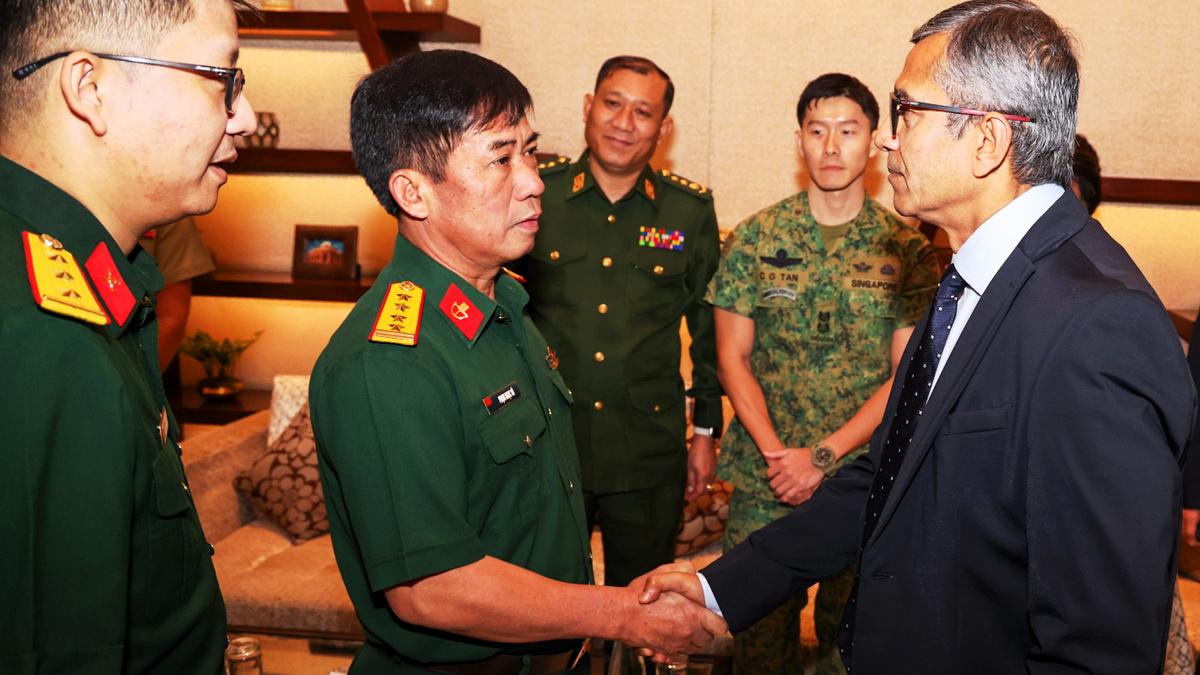
- 23 Mar 2025
In News:
- 14th ASEAN Defence Ministers’ Meeting-Plus (ADMM-Plus) Experts’ Working Group on Counter-Terrorism (EWG on CT) was held in New Delhi.
- India and Malaysia took over as co-chairs for the 2024–2027 cycle, succeeding Myanmar and Russia (2021–2024).
- Two major exercises were announced:
- Table-top Exercise in Malaysia – 2026
- Field Training Exercise in India – 2027
- These are part of the EWG on CT 2024–2027 Work Plan.
Purpose and Agenda:
- To devise a comprehensive and coordinated counter-terrorism strategy.
- To share on-ground experiences of ASEAN and partner nations’ defence forces.
- Focus on evolving threats like violent extremism, radicalisation, and terrorism financing.
Participants in ADMM-Plus EWG on CT:
- ASEAN Member States: Indonesia, Malaysia, Philippines, Singapore, Thailand, Brunei, Vietnam, Laos, Myanmar, Cambodia.
- Dialogue Partners: India, China, U.S., Russia, Japan, South Korea, Australia.
- ASEAN Secretariat also participated.
India-EU Counterterrorism Engagement:
- On the sidelines of the Raisina Dialogue, the European Union (EU) conducted a technical workshop in New Delhi on preventing and countering violent extremism.
- Organized with the Embassy of the Netherlands and attended by security experts from EU states like Belgium, Bulgaria, Germany, and the Netherlands, as well as the Strong Cities Network (SCN).
- Discussions focused on:
- De-radicalisation strategies
- Rehabilitation of extremists
- Whole-of-government approaches
- Risk evaluation and reintegration
- Reinforced the India-EU commitment made during the EU College of Commissioners' visit to India and in the Joint Leaders' Statement.
About ASEAN:
- Established: August 8, 1967 (Bangkok Declaration)
- Headquarters: Jakarta, Indonesia
- Motto: "One Vision, One Identity, One Community"
- Members (10):
- Founding (1967): Indonesia, Malaysia, Philippines, Singapore, Thailand
- Later: Brunei (1984), Vietnam (1995), Laos & Myanmar (1997), Cambodia (1999)
- Population: ~662 million (2022)
- Combined GDP: $3.2 trillion (2022)
ASEAN Institutional Mechanisms:
- ASEAN Summit – Annual heads-of-state meeting.
- ASEAN Coordinating Council (ACC) – Implements decisions and agreements.
- ASEAN Regional Forum (ARF) – India joined in 1996; focuses on regional security dialogue.
- ASEAN Secretariat – Administrative support to ASEAN initiatives.
India-ASEAN Relations:
- Sectoral Dialogue Partner since 1992; Full Dialogue Partner since 1996.
- India-ASEAN FTA:
- Goods (2009)
- Services & Investments (2014)
- Strategic Partnership: Established in 2012.
- India in ADMM-Plus: Actively participates in defence and security cooperation mechanisms.
- ASEAN Future Forum: Proposed by Vietnam (2023); India is a founding member.
2030 Global Forest Vision (GFV)
- 23 Mar 2025
In News:
The 2030 Global Forest Vision (GFV), released in March 2025 by the Forest Declaration Assessment (FDA), outlines priority actions for governments to reverse forest loss and align environmental and trade policies ahead of UNFCCC COP30 (November 2025).
Background:
- The Forest Declaration Assessment (FDA) was established in 2015 to monitor progress on the New York Declaration on Forests (NYDF), a voluntary pact launched in 2014.
- NYDF includes 10 goals aimed at halting deforestation by 2030 and is supported by governments, corporations, indigenous groups, and civil society.
- India is not a signatory to the NYDF as of 2025.
Current State of Forests (Key Data):
- Despite commitments from 140 countries, 6.37 million hectares of forests were lost in 2023.
- Major drivers of deforestation:
- Agricultural demand for palm oil, soy, beef, and timber.
- 80% of Amazon deforestation is due to cattle ranching.
- 800+ million trees lost between 2017–2022 to meet Brazilian beef exports.
- In Indonesia and Malaysia, palm oil expansion threatens orangutans and Sumatran tigers.
Eight Priority Actions for Governments (GFV 2025):
- Ambition:Integrate forest conservation into national climate and biodiversity plans and COP30 commitments.
- Trade:Ensure legal, deforestation-free, and degradation-free trade through international partnerships.
- Finance:Scale up results-based payments and forest carbon credit systems, as agreed in the 2024 Forest & Climate Leaders’ Statement.
- Rights:Secure land rights of Indigenous Peoples (IPs) and Local Communities (LCs) to protect traditional forest stewardship.
- Supervision:Mandate financial institutions to assess and manage forest-related risks.
- Subsidies:Repurpose harmful subsidies to support sustainable food systems, bioeconomy, and forest management.
- Governance:Align land-use sector governance with global forest and climate commitments.
- Debt Flexibility:Recognize forests as natural capital in debt management to enhance fiscal space for forest-rich countries.
Global and Regional Efforts:
- EU Deforestation Regulation (2026):Bans imports linked to deforestation; companies must ensure supply chain transparency.
- U.S. Initiatives:Stricter laws against illegal logging and deforestation-linked imports.
- Challenges:
- China and India have not implemented deforestation-free trade regulations.
- Smallholder farmers lack the resources to certify products as deforestation-free.
- Developing nations (Brazil, Indonesia, African countries) express concerns over economic impacts of stricter trade rules.
Recommendations by GFV 2025:
- Tighten Global Trade Policies:Prevent companies from rerouting products to markets with weak regulations.
- Adopt Deforestation-Free Trade Laws:India, China, and other major economies urged to enact such policies.
- Support Local Economies:Provide technical and financial support to farmers for sustainable practices.
- Enhance Global Monitoring:Improve tracking systems for forest-linked commodities and promote global cooperation.
Kerala Establish Senior Citizens Commission
- 23 Mar 2025
In News:
In a landmark move, Kerala has become the first state in India to pass legislation creating a Senior Citizens Commission, with the passing of the Kerala State Senior Citizens Commission Bill, 2025.
Background: Rising Elderly Population in Kerala
- Kerala is witnessing rapid population ageing, outpacing national trends.
- Elderly (60+) as % of total population:
- 1961: 5.1% (Kerala) vs. 5.6% (India)
- 2001: 10.5% (Kerala) vs. 7.5% (India)
- 2015: 13.1% (Kerala) vs. 8.3% (India)
- Current elderly population: Approximately 4.8 million, expected to rise to 8.4 million by 2036.
- Key issues: neglect, abuse, financial insecurity, and loneliness.
Senior Citizens Commission: Key Highlights
- Statutory body under the Kerala State Senior Citizens Commission Act, 2025.
- Objective: Protection, welfare, rehabilitation, and empowerment of senior citizens.
- Will act as an independent authority with powers similar to a civil court.
Structure:
- Chairperson (status of Govt. Secretary) and three members (all senior citizens).
- Composition includes at least one woman and one member from SC/ST communities.
- Term: 3 years.
- Experts may be invited as special invitees (no voting rights).
Core Functions and Responsibilities:
- Policy Advisory:
- Recommends policies for elderly welfare.
- Aligns with national goals, such as the Maintenance and Welfare of Parents and Senior Citizens Act, 2007.
- Legal and Grievance Redressal:
- Investigates complaints of abuse, neglect, or exploitation.
- Can summon individuals, record evidence, and recommend protective actions.
- Healthcare and Mental Well-being:
- Promotes geriatric care, regular health check-ups, and mental health support.
- Addresses loneliness, depression, and social isolation.
- Social Inclusion and Engagement:
- Encourages intergenerational bonding and community programs.
- Utilizes skills and experience of the elderly for social and community development.
- Financial Security Support:Aids in accessing pensions, social security schemes, and financial counselling.
- Monitoring and Reporting:
- Submits periodic reports to the state government.
- Makes recommendations for policy improvement and conflict resolution.
- Custodial Oversight:Addresses issues related to elderly detainees in prisons and lock-ups.
Budget and Administrative Details:
- Annual expenditure: Approx. ?1 crore (salaries, allowances, operations).
- One-time setup cost: ?9 lakh from the Consolidated Fund of the State of Kerala.
Significance:
- First such commission in India, fulfilling recommendations under the National Policy on Senior Citizens, 2011.
- Aims to serve as a model for other Indian states facing similar demographic shifts.
- Reinforces Kerala’s leadership in elderly welfare policies.
GPS Interference and Spoofing in Indian Airspace
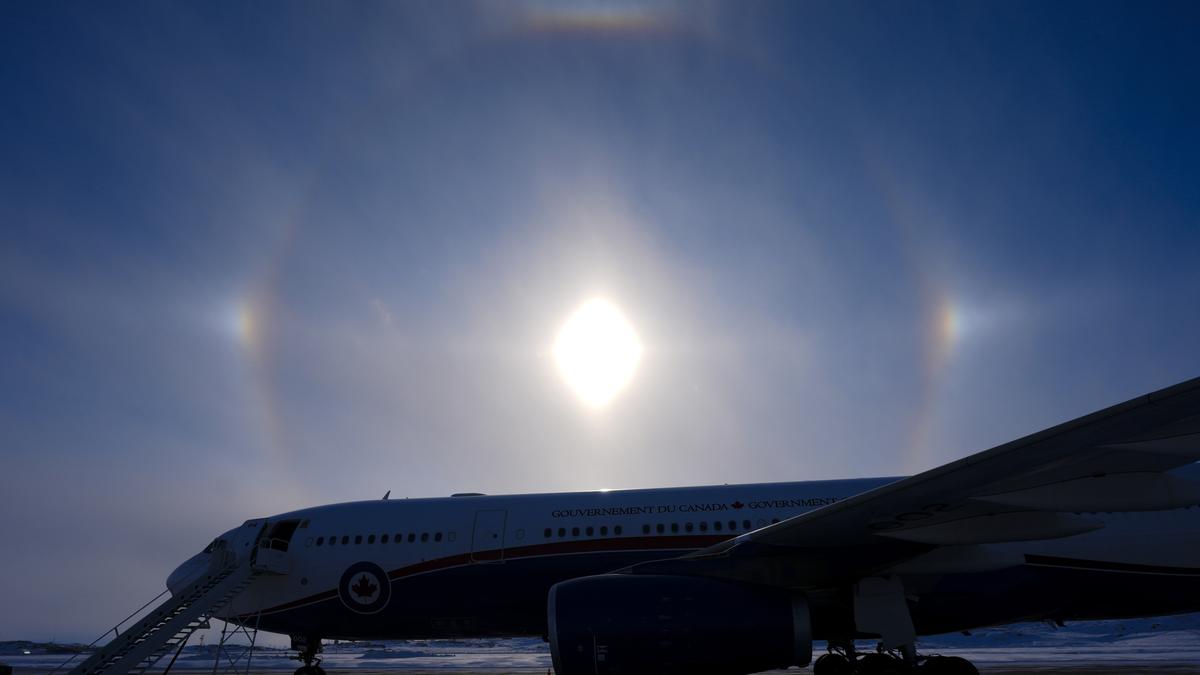
- 23 Mar 2025
In News:
Between November 2023 and February 2025, 465 incidents of GPS interference and spoofing were reported, predominantly in the Amritsar and Jammu border regions. This was disclosed by Minister of State for Civil Aviation MurlidharMohol in a written reply to the Lok Sabha.
What is GPS/GNSS Spoofing?
- GPS (Global Positioning System) and GNSS (Global Navigation Satellite System) spoofing involves broadcasting false GPS signals that deceive receivers into calculating incorrect locations.
- It is a form of cyberattack exploiting weak satellite signal strength to override legitimate GPS data.
- It can mislead aircraft navigation systems, creating flight safety risks in sensitive regions like international borders.
How GPS Spoofing Works:
- GPS satellites transmit weak signals to Earth.
- Spoofers broadcast stronger fake signals mimicking these satellites.
- Receivers (like those in aircraft) pick up false data, resulting in mislocation or navigation errors.
Types of Spoofing Attacks:
- GPS Spoofing – False location data.
- IP Spoofing – Hides origin of data, often used in DDoS attacks.
- SMS/Caller ID Spoofing – Disguises identity to deceive users.
Government Response:
DGCA Circular (Nov 2023):
- Mandated reporting of GPS interference.
- Issued mitigation guidelines for:
- Aircraft operators
- Pilots
- Air Traffic Controllers
- Air Navigation Service Providers (ANSP)
Use of International Best Practices:
- Guidelines align with ICAO and EASA standards.
- NOTAMs (Notice to Airmen) are issued in affected areas.
- Airlines implement Standard Operating Procedures (SOPs) to manage spoofing incidents.
Navigation Redundancy Measures:
- Retention of ground-based navigation systems as backups.
- Ensures continued navigation in the event of GPS disruption.
Role of AAI (Airports Authority of India):
- Sole Air Navigation Service Provider (ANSP) in India.
- Continuously upgrading air navigation infrastructure to counter emerging threats like spoofing.
World Happiness Report 2025
- 23 Mar 2025
In News:
The World Happiness Report (WHR) 2025 was released on 20th March (World Happiness Day) by the Wellbeing Research Centre at the University of Oxford, in collaboration with Gallup and the UN Sustainable Development Solutions Network (UNSDSN).
India’s Performance:
- India’s Rank (2025):118th out of 147 countries (Improved from 126th in 2024).
- Sub-Indicator Performance:
- Donations: 57th
- Volunteering: 10th
- Helping a Stranger: 74th
- Wallet Return Probability:
- 115th (by neighbor)
- 86th (by stranger)
- 93rd (by police)
- Sub-Indicator Performance:
- Happiness Score: Increased from 4.054 (2021–23) to 4.389 (2022–24).
- Rank among Neighbors:
- Nepal: 92nd
- Pakistan: 109th
- Myanmar: 126th
- Sri Lanka: 133rd
- Bangladesh: 134th
Top 10 Happiest Countries (2025):
- Finland (8th consecutive year)
- Denmark
- Iceland
- Sweden
- Israel
- Costa Rica (new entrant)
- Netherlands
- Norway
- Luxembourg
- Mexico(new entrant)
Least Happy Countries (Bottom 5):
- 147th: Afghanistan (4th consecutive year as lowest)
- 146th: Sierra Leone
- 145th: Lebanon
- 144th: Malawi
- 143rd: Zimbabwe
About the Report:
- Purpose: Measures global well-being through life evaluations and promotes policy focus on happiness, mental health, and quality of life over mere economic growth.
- Methodology:
- Based on Gallup World Poll (2022–2024 data).
- Uses Cantril Ladder Scale (0–10) for life evaluation.
- Six Key Indicators:
- GDP per capita
- Healthy life expectancy
- Social support
- Freedom to make life choices
- Generosity
- Perception of corruption
Global Trends in Happiness (2025):
- Nordic Dominance: Finland, Denmark, Iceland, and Sweden occupy top ranks.
- Decline in Western Countries:
- USA: 24th (down from 11th in 2012)
- UK: 23rd (lowest since 2017)
- Rising loneliness and social isolation major causes.
- Israel (5th): Maintained high rank despite ongoing conflict.
- Social Support Decline: 19% of young adults globally report having no one to rely on.
Special Focus: India vs Pakistan – The Paradox
Despite India’s:
- Higher GDP per capita ($2,480.8 vs Pakistan’s $1,365.3),
- Better health indicators (life expectancy: 58.1 vs 56.9),
- Better corruption perception rank (India: 96th, Pakistan: 135th),
India still ranks lower in happiness.
Reason: Low scores in perceived freedom and individual life satisfaction.
World Happiness Day:
- Observed on: 20th March
- Initiated by: Bhutan, which pioneered the concept of Gross National Happiness (GNH).
- Adopted by UNGA: July 2012
- Theme 2025:"Caring and Sharing"
Exercise Sea Dragon 2025
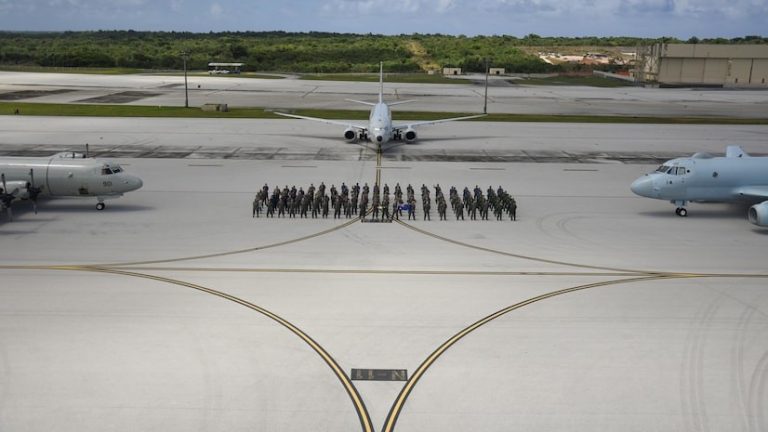
- 22 Mar 2025
In News:
India successfully concluded its participation in Exercise Sea Dragon 2025, a two-week multinational anti-submarine warfare (ASW) drill conducted in the Indo-Pacific region, hosted by the United States Navy’s 7th Fleet.
About Exercise Sea Dragon 2025
- Type: Annual Multinational Anti-Submarine Warfare (ASW) Exercise
- Duration: Two weeks
- Location:Andersen Air Force Base, Guam, Western Pacific
- Host: U.S. Navy’s 7th Fleet
- Inception: Started as a bilateral US-Australia exercise in 2019; expanded to include more Indo-Pacific allies.
- India’s Participation: Since 2021; SD25 marks India’s 4th consecutive participation.
Objectives of Sea Dragon 2025
- Enhance Maritime Security and regional naval cooperation
- Strengthen anti-submarine warfare capabilities
- Improve interoperability and coordination among Indo-Pacific allies
- Promote a free, open, and rules-based Indo-Pacific
- Address undersea threats, particularly in light of China’s growing maritime presence
Key Features of Sea Dragon 2025
- Live ASWEX: Tracking of real U.S. Navy submarines
- Mobile Drills: Use of MK-30 ‘SLED’ (Submarine Launch Expendable Device) as training targets
- Competitive Phase: Crews evaluated and graded based on ASW tactics and effectiveness
- Theoretical + Practical Training: Included tactical discussions, submarine detection, and neutralization scenarios
- Deployment of Advanced MPRA (Maritime Patrol and Reconnaissance Aircraft): Equipped with sonobuoys and sensors for submarine tracking
Significance for India
- Improves ASW Readiness and operational capabilities of the Indian Navy
- Strengthens ties with Quad members (U.S., Australia, Japan) and other Indo-Pacific partners
- Supports India’s broader strategy of naval modernization
- Aligns with India’s efforts to safeguard its interests in the Indian Ocean Region (IOR) and maintain regional stability.
Outcome
- RAAF (Australia) emerged as the top-performing team in the competitive phase.
- India successfully demonstrated its capabilities and reaffirmed commitment to Indo-Pacific security cooperation.
AFSPA in the Northeast
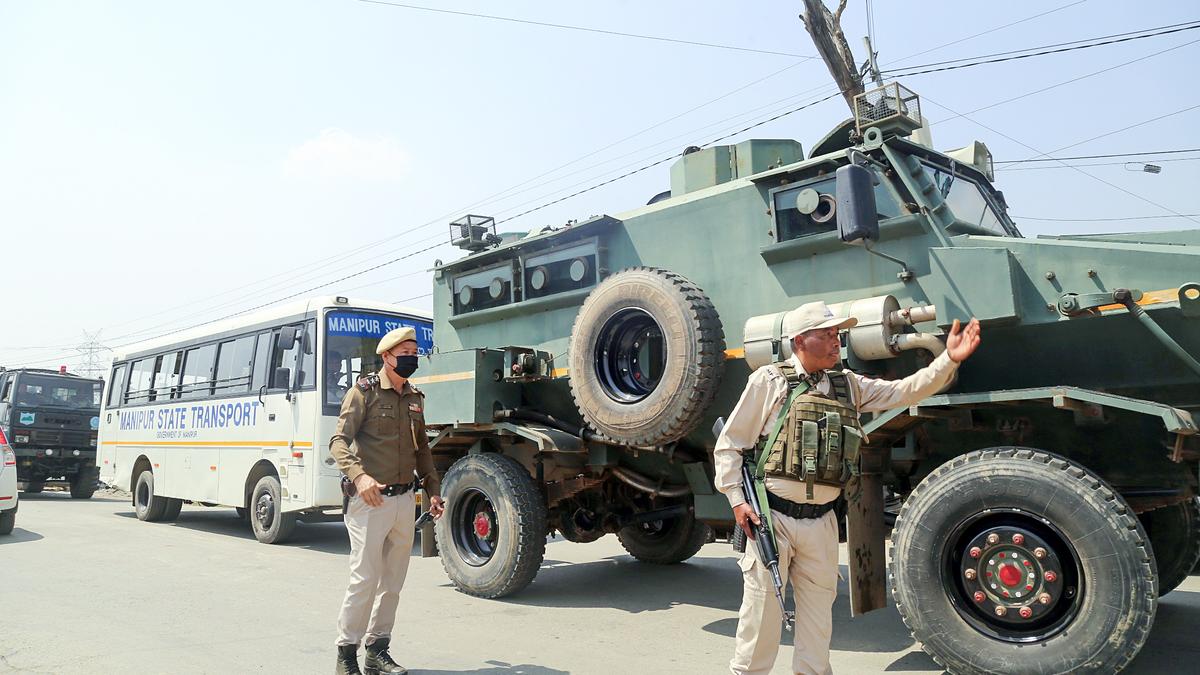
- 22 Mar 2025
In News:
The Union Ministry of Home Affairs (MHA) is reviewing the scope of the Armed Forces (Special Powers) Act, 1958 (AFSPA) in the Northeast, especially in light of ongoing ethnic violence in Manipur and security reviews in Nagaland, Arunachal Pradesh, and Assam.
What is AFSPA?
- AFSPA (1958) empowers the armed forces to maintain public order in ‘disturbed areas’.
- It authorizes armed forces to:
- Use force or open fire after due warning.
- Arrest without a warrant.
- Conduct searches without a warrant.
- Enjoy legal immunity from prosecution without prior sanction of the Central Government.
Declaration of Disturbed Area
- A region is declared ‘disturbed’ through a notification in the Official Gazette.
- The declaration can be made by:
- Governor of a State, or
- Central Government.
- Duration: Notifications are valid for 6 months, reviewed periodically for extension or withdrawal.
AFSPA in Manipur: Recent Developments
- AFSPA was withdrawn from all valley police stations between April 2022–April 2023 due to improved law and order.
- However, after ethnic violence erupted on May 3, 2023, the Act was reimposed in 6 police stations across 5 districts (mostly in valley areas) as of November 14, 2024.
- At a review meeting on March 20, 2025, the Indian Army proposed re-imposition of AFSPA in 12 more police station limits in Manipur Valley for operational efficiency.
- President’s Rule has been in force in Manipur since February 13, 2025.
- The final decision on AFSPA expansion in Manipur will be taken by the MHA.
Status in Other Northeastern States
- The MHA held a multi-agency review on March 19, 2025, regarding AFSPA coverage in Nagaland, Arunachal Pradesh, Assam, and Manipur.
- Current Authority to Notify Disturbed Areas:
- MHA: Nagaland and Arunachal Pradesh.
- State Governments: Manipur and Assam.
- Possible De-Notification: One district in Assam may be removed from AFSPA coverage based on the latest review.
Legal and Administrative Background
- AFSPA came into force in Manipur in 1981.
- Manipur attained Statehood in 1972, earlier being a Union Territory.
- The Imphal Municipality area has remained outside AFSPA since 2004.
- The most recent “disturbed area” notification for hill districts in Manipur was issued on September 26, 2024.
States Under AFSPA (as of February 2025)
- Manipur
- Nagaland
- Arunachal Pradesh
- Assam
- Jammu and Kashmir
PEPSU Muzhara Movement

- 22 Mar 2025
In News:
The PEPSU Muzhara Movement, commemorated annually on March 19, was a significant agrarian uprising by landless tenant farmers (muzharas) in Punjab demanding ownership rights over the land they cultivated. It stands as a historic resistance against feudal and colonial exploitation.
Background & Region
- Initiation: Started in the 1930s in the Patiala princely state.
- Expanded Across: 784 villages in present-day Patiala, Barnala, Mansa, Sangrur, Bathinda, Mohali, Fatehgarh Sahib, Faridkot (Punjab), and Jind (now in Haryana).
- After independence, the region was reorganized into the Patiala and East Punjab States Union (PEPSU), where the movement intensified.
Who Were the Muzharas?
- Muzharas were landless tenant farmers who cultivated land owned by biswedars (feudal landlords).
- They were forced to give one-third of their produce to landlords, who further paid a share to princely rulers, who in turn paid the British.
- Even after Independence (1947), landlords continued this exploitative practice, leading to widespread unrest.
Causes of the Movement
- Feudal oppression and loss of ancestral land.
- Colonial revenue structure perpetuated peasant poverty.
- Post-independence continuation of feudal demands.
- Denial of land ownership despite generations of cultivation.
Key Leaders
- Jagir Singh Joga – Organised and united tenant farmers.
- Buta Singh – Advocate for land redistribution.
- Teja Singh Sutantar – Linked the struggle with broader peasant movements.
- Sewa Singh Thikriwala – Anti-feudal ideologue and early inspiration.
- Bhai Jodh Singh – Strengthened the movement through grassroots mobilisation.
Phases and Nature of the Movement
- Peaceful Protests: Initial petitions and mobilisations.
- Armed Resistance: Tenant farmers took up arms for self-defense as repression increased.
- Mass Mobilisation: Conferences, rallies, and united action across villages.
Significance of March 19
- In March 1949, landlords attempted to reclaim cultivated lands in Kishangarh (Mansa district).
- The muzharas resisted by harvesting crops themselves, leading to a violent standoff.
- On March 17, a police officer was killed, resulting in the arrest of 35 muzharas—all acquitted by 1950.
- On March 19, 1949, the army surrounded the village, and four muzharas were killed.
- Since 1953, March 19 has been observed as “Muzhara Shaheedi Diwas”, honouring martyrs of the movement.
Outcome
- Land Reforms (1952): The movement culminated in reforms granting ownership rights to tenant farmers.
- Became a symbol of peasant resistance against exploitation and injustice.
Samarth Incubation Programme
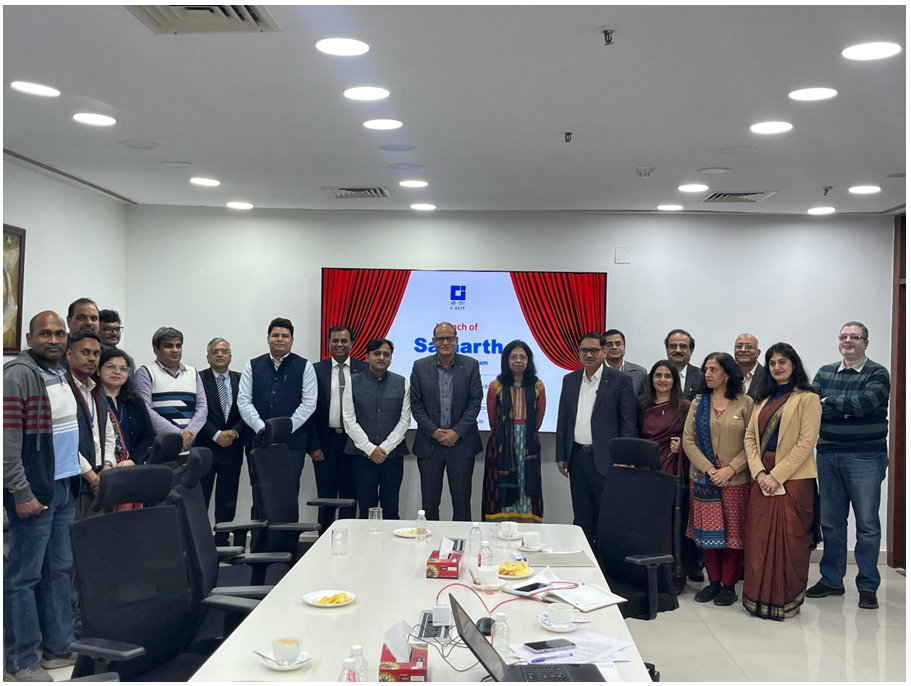
- 22 Mar 2025
In News:
The ‘Samarth’ Incubation Programme is a strategic initiative launched by the Centre for Development of Telematics (C-DOT) to foster startup-driven innovation in India’s rapidly evolving telecommunications and IT sectors. This programme aligns with the goals of Atmanirbhar Bharat and Digital India, aiming to build indigenous capabilities in cutting-edge technologies.
Key Highlights:
- Launched By:Centre for Development of Telematics (C-DOT), an autonomous R&D centre under the Department of Telecommunications (DoT), Government of India.
- Implementation Partner:Software Technology Parks of India (STPI), under the Ministry of Electronics and Information Technology (MeitY), which promotes IT/ITES innovation, startups, and R&D.
- Launch Date:19th March 2025.
- Objective:To support DPIIT-recognized startups developing next-generation technologies in the fields of:
- Telecom Software
- Cybersecurity
- 5G/6G Communications
- Artificial Intelligence (AI)
- Internet of Things (IoT)
- Quantum Technologies
- Program Structure:
- Two cohorts, each of six months duration.
- 18 startups per cohort (Total of 36 startups).
- Hybrid mode of delivery (virtual + physical support).
Support and Benefits Provided
- Financial Assistance:Grant of up to ?5 lakh per selected startup.
- Infrastructure Access:
- Fully furnished office space for 6 months at the C-DOT campus.
- Access to C-DOT’s lab and testing facilities.
- Mentorship & Networking:
- Guidance from C-DOT technical experts and industry leaders.
- Connection with investors, stakeholders, and potential collaborators.
- Future Opportunities:Eligible startups may be offered continued collaboration under the C-DOT Collaborative Research Program, based on their performance and innovation outcomes.
Selection Process
- Eligibility:Open to startups recognized by the Department for Promotion of Industry and Internal Trade (DPIIT).
- Screening:Applications are evaluated through a structured selection process:
- Screening of applications based on innovation potential.
- Pitch presentation before an expert selection committee.
- Final cohort selection.
Significance for India’s Tech Ecosystem
- Promotes self-reliance in telecom and IT hardware/software innovation.
- Encourages the commercialization of research and ideas in emerging technology domains.
- Creates a supportive ecosystem for startups to thrive through structured mentorship and funding.
- Contributes to job creation and skill development in advanced digital sectors.
APAAR ID

- 22 Mar 2025
In News:
The Centre and several State governments are pushing for large-scale adoption of the APAAR ID, leading to concerns over privacy, data security, and its voluntary status.
What is APAAR?
APAAR stands for Automated Permanent Academic Account Registry, a 12-digit unique student identification number. It is a central digital record system introduced under the National Education Policy (NEP) 2020 and is part of the broader ‘One Nation, One Student ID’ initiative. The ID consolidates students’ academic and co-curricular achievements across school and higher education, accessible via DigiLocker and generated through the UDISE+ portal.
Objectives and Benefits:
- Seamless Academic Mobility: Enables smooth transfers between schools and institutions.
- Permanent Record Keeping: Stores marksheets, qualifications, and affiliations in one place.
- Career and Skill Support: Facilitates use in entrance exams, job applications, skill training, and admissions.
- Data for Policymaking: Helps track educational outcomes and inform targeted interventions.
- Integration with Other Platforms:
- DigiLocker: Cloud-based certificate storage recognized under IT Rules, 2016.
- Academic Bank of Credits (ABC): Links credit transfers with APAAR ID.
Is APAAR Mandatory?
- Legally Voluntary: The Union Government clarified in Parliament (Dec 2024) that APAAR registration is not compulsory.
- Implementation Pressure: CBSE and states like Uttar Pradesh have aggressively pushed for 100% coverage, leading to confusion.
- Opt-Out Provision: Parents can submit a written refusal to schools. Templates are available from digital rights organizations like the Software Freedom Law Centre (SFLC).
Generation Process:
- School verifies student’s demographic details.
- Parent/guardian provides consent (especially for minors).
- ID is generated post-authentication.
Key Challenges:
- Privacy Concerns: Collection of children's personal data without a dedicated legal framework raises constitutional questions.
- Section 9(3) of the Digital Personal Data Protection Act, 2023 prohibits tracking and profiling of children.
- Risk of data exposure due to open APIs and lack of cybersecurity safeguards.
- Lack of Transparency: No clear policy document; RTI applications have been redirected multiple times without clear answers.
- Administrative Burden: Teachers duplicate data already recorded under UDISE+, leading to extra workload.
- Technical Glitches: Issues in Aadhaar linking and data mismatches delay generation. Example: Only 24% APAAR generation in Bengaluru Urban South due to such errors.
Way Forward:
- Clear Communication: Government must ensure schools inform parents about the voluntary nature.
- Legal Safeguards: A robust data protection mechanism should be mandated before full-scale rollout.
- Capacity Building: Train school authorities on secure data handling and informed consent procedures.
- Monitoring and Accountability: States should report progress and resolve grievances via helplines and grievance redress mechanisms.
WEF UpLink Annual Impact Report 2025
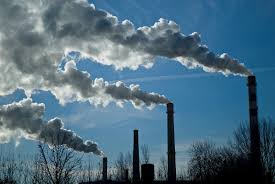
- 21 Mar 2025
In News:
The World Economic Forum’s (WEF) UpLink Annual Impact Report 2025 underscores the significant contributions of early-stage start-ups in tackling climate and sustainability challenges globally.
About UpLink:
- Launched: 2020 at Davos by WEF in collaboration with Deloitte and Salesforce.
- Objective: Open innovation platform to support the UN Sustainable Development Goals (SDGs) by connecting entrepreneurs with experts, investors, and stakeholders.
Key Environmental and Social Impacts (2023–2024):
Category Impact
Carbon Emissions 142,400 tonnes of CO? prevented (equal to emissions
of ~30,000 cars)
Ecosystem Protection 140 million hectares of land and water safeguarded
Water Management 2.5 billion litres of hazardous wastewater treated
Waste Management 28 million tonnes of waste tracked
Water, Sanitation & Hygiene (WASH) 2.7 million people gained improved access
Job Creation 30,000+ new jobs generated
Livelihood Support ~500,000 smallholder farmers and fishers experienced
income growth
Waste Collector Empowerment 18,000 collectors integrated into formal markets
Notable Indian Contributions:
- Indra Water: Processed 1.2 billion litres of wastewater in 2024 (243% rise from 2022).
- S4S Technologies: Reduced 60,000 tonnes of food waste — enough to feed 2.7 million people for a month.
Global Innovations Highlighted:
- EnviCore (Canada): Uses mining waste in construction to cut emissions.
- Umgrauemeio (Brazil): AI-based wildfire monitoring across 6.7 million hectares of forests.
- SHAYP: Saved 7 billion litres of water in 2024 using leakage detection; aims for 100 billion litres by 2027.
- GreenPlat (Brazil): Tracked 12.3 million tonnes more waste in 2024 than the previous year.
Investment and Innovation Trends:
- Total Funds Raised by UpLink Ventures in 2024: $633 million (up by $196 million from 2023).
- Customer Base Growth: Nearly 50% of ventures reported over 40% increase in customers.
- Circular Economy Focus: 13 ventures supported under the Traceability for Circularity Challenge to promote ethical and waste-reducing value chains.
Future Focus Areas (Planned by UpLink):
- Sustainable mining
- Carbon capture technologies
- AI-driven environmental monitoring
State of the Global Climate 2024 Report
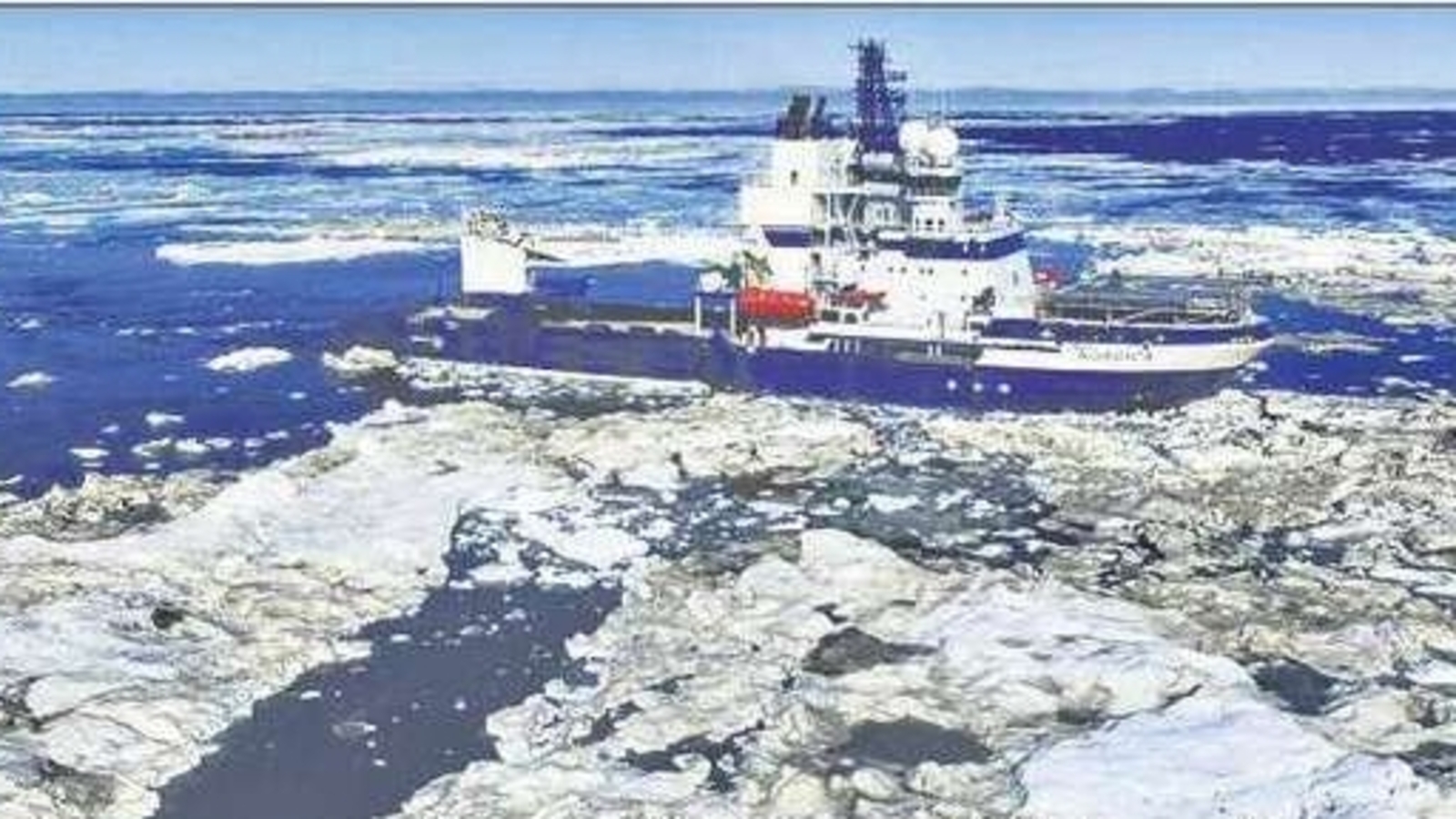
- 21 Mar 2025
In News:
The World Meteorological Organization (WMO) released its State of the Global Climate 2024 Report at COP29 (Baku), warning that global warming is dangerously close to breaching the 1.5°C threshold set by the Paris Agreement.
About WMO
- Type: UN Specialized Agency
- Established: 1950
- Headquarters: Geneva, Switzerland
- Membership: 193 (187 Member States + 6 Territories)
- Mandate: Meteorology, operational hydrology, and geophysical sciences.
- Reports Released:
- State of the Global Climate Report
- Greenhouse Gas Bulletin
- Global Water Resources Report
- State of Climate Services Report
- United in Science Report
Key Findings – State of Global Climate 2024
Global Temperature Rise
- Current warming: 1.34°C–1.41°C above pre-industrial levels.
- 19 of the last 20 months crossed the 1.5°C threshold temporarily.
- 2024: Warmest year in the 175-year observational record.
- Projected crossing of the 1.5°C threshold: by September 2029.
Greenhouse Gases (2023)
- CO?: 420 ppm – 151% of pre-industrial levels (highest in 800,000 years)
- CH? (Methane): 1923 ppb – 266% of pre-industrial levels
- N?O (Nitrous Oxide): 335.8 ppb – 124% of pre-industrial levels
Ocean & Cryosphere
- Ocean Heat Content: Highest in 65 years – oceans absorb 90% of global heat
- Sea Level Rise:
- 1993–2002: 2.1 mm/year
- 2015–2024: 4.7 mm/year (rate doubled)
- Glacier Melt:
- 2022–2024: Largest 3-year negative mass balance on record
- Severe loss in Norway, Sweden, Svalbard, and Andes
- Arctic Sea Ice: Record lows for 18 consecutive years
- Antarctic Sea Ice: 2nd-lowest extent ever
- Ocean Acidification:
- Surface pH falling fastest in Indian Ocean, Southern Ocean, and Pacific
- Effects irreversible for centuries
Extreme Weather Events & Displacement
- 2024: Record-high displacements from climate disasters
- Cyclones, floods, and droughts worsened food and humanitarian crises
- Worst-hit regions: East Asia, Southeast Europe, West Asia, Mediterranean
Reasons Behind These Trends
- GHG Emissions: Fossil fuel combustion, industrial emissions, agriculture, and deforestation.
- El Niño Effect: Warm Pacific currents intensified 2024’s global heat.
- Urban Heat Islands: Dense cities retain heat, increasing local warming.
- Ocean Absorption: Excess atmospheric CO? and heat absorbed by oceans.
Global Climate Governance
- UNFCCC (1992): Multilateral treaty for climate action.
- Paris Agreement (2015):
- Goal: Limit warming to below 2°C, aim for 1.5°C.
- Nationally Determined Contributions (NDCs)
- $100 billion/year climate finance pledge
- Global Methane Pledge (2021): Cut methane emissions by 30% by 2030.
- Global Ocean Treaty (2023): Protect 30% of oceans by 2030.
- UN Decade on Ecosystem Restoration (2021–2030): Forest and marine recovery.
- IPCC: UN scientific body for climate assessments (doesn’t conduct research).
India’s Climate Initiatives
Targets & Strategies
- Net Zero by 2070 (COP26)
- LT-LEDS (2022): Long-term low emissions strategy
- Updated NDC (2022):
- Reduce GDP emissions intensity by 45% by 2030 (vs. 2005)
- 50% electricity capacity from non-fossil sources by 2030
Renewable Energy & Alliances
- International Solar Alliance (ISA):
- Launched with France in 2015 (COP21)
- Aim: Mobilize $1 trillion in solar investments by 2030
Afforestation & Ecosystem Protection
- Green Credit Program (2023) – incentivizes afforestation
- Ek Ped MaaKe Naam (2024) – tree plantation campaign
- NAP, CAMPA, Forest Act 1980 – promote forest restoration
- MISHTI (2023) – Mangrove restoration (?12.55 cr in 2024–25)
Behavioral Change
- LiFE (Lifestyle for Environment) – promotes sustainable consumption
Challenges to Climate Action
Sector Key Challenges
Energy High coal dependence (>50%), renewable intermittency, grid gaps, foreign tech reliance
Urbanization Rising energy/waste demand, land use conflicts
Industry Hard-to-abate emissions in cement, steel, transport
Agriculture Fossil fuel inputs, livestock methane, fertilizer N?O
Finance Climate finance disparities; India criticized COP29’s $300 bn/year goal as insufficient
Equity Developed nations emit more, but developing nations suffer more
Greenwashing Misleading climate claims by corporates/governments
SansadBhashini Initiative
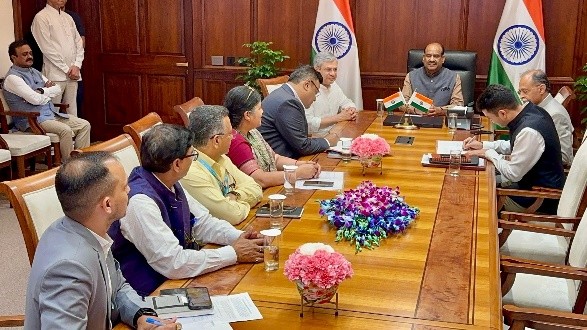
- 21 Mar 2025
In News:
The SansadBhashini Initiative is a collaborative project between the Lok Sabha Secretariat and the Ministry of Electronics and Information Technology (MeitY), launched to enhance digital and linguistic accessibility in India's parliamentary functioning.
About SansadBhashini
- Objective:To provide real-time AI-powered translation and transcription of parliamentary proceedings and documents across multiple Indian languages, ensuring greater transparency, inclusivity, and accessibility.
- Associated Platform:It is built on MeitY’sBhashini platform, a part of the National Language Translation Mission (NLTM), focused on democratizing access to digital content in Indian languages.
Key Features and Technologies Used
- AI-Powered Real-Time Translation: Enables instantaneous multilingual translation of legacy debates, legislative documents, and committee reports.
- Speech-to-Text Transcription System
- Converts spoken parliamentary debates into text with features such as:
- Background noise reduction
- Customizable vocabulary suited for legislative discourse
- High transcription accuracy
- Converts spoken parliamentary debates into text with features such as:
- Automatic Summarization: Generates concise and coherent summaries of long parliamentary discussions, aiding in faster decision-making and better public understanding.
- AI-Driven Chatbot Support
- Assists MPs, researchers, and officials with quick access to:
- Procedural rules
- Parliamentary archives
- Legislative documents
- Assists MPs, researchers, and officials with quick access to:
- Multilingual Accessibility and Inclusivity: Enhances linguistic diversity in governance by making proceedings available in multiple regional languages, thereby fostering greater public engagement.
Significance
- Strengthens e-Governance and digital democracy by making Parliament more accessible to citizens, especially non-Hindi/English speakers.
- Enhances documentation, transparency, and archiving through digitization and AI tools.
- Empowers MPs and legislative staff with real-time information and language tools, improving efficiency.
- Supports India’s Digital India mission and promotes linguistic equity in democratic institutions.
SagarmalaProgramme

- 21 Mar 2025
In News:
The SagarmalaProgramme, launched by the Ministry of Ports, Shipping & Waterways (MoPSW) in 2015, aims to revolutionize India’s maritime sector by focusing on port-led development, logistics optimization, and coastal economic growth. With a 7,500 km coastline and strategic positioning on global trade routes, India is set to leverage its maritime potential for sustainable economic development.
Key Components of the SagarmalaProgramme
- Port Modernization & New Port Development: Upgrading existing ports and constructing new ones to enhance operational capacity, reduce bottlenecks, and improve efficiency.
- Port Connectivity Enhancement: Fostering seamless multi-modal logistics, including inland waterways and coastal shipping, to optimize time and cost of cargo transportation.
- Port-Led Industrialization: Establishing industrial clusters near ports, boosting economic growth while minimizing logistics costs.
- Coastal Community Development: Focusing on the sustainable development of coastal communities, through skill development, livelihood generation, and fisheries enhancement.
- Coastal Shipping & Inland Waterways Transport: Promoting eco-friendly cargo transportation via coastal and inland waterways to alleviate road and rail congestion.
Key Achievements and Outcomes
- Project Implementation: 839 projects worth ?5.79 lakh crore have been identified, with 272 projects already completed, amounting to ?1.41 lakh crore in investments.
- Growth in Coastal Shipping: Coastal shipping has surged by 118% over the last decade, significantly reducing logistics costs and emissions.
- Increased Inland Waterway Cargo: A 700% increase in inland waterway cargo, reducing congestion on roadways and railways.
- Improved Global Maritime Standing: Nine Indian ports now rank among the world’s top 100, with Vizag among the top 20 container ports globally.
Sagarmala 2.0 and Strategic Initiatives
- Sagarmala 2.0, launched with a ?40,000 crore budgetary support, aims to position India among the top five shipbuilding nations by 2047.
- It introduces a focus on shipbuilding, repair, recycling, and further port modernization, which will help India become a global maritime hub.
- The initiative targets a shipbuilding capacity of 4 million GRT and an annual port handling capacity of 10 billion metric tons.
- Additionally, the Sagarmala Startup Innovation Initiative (S2I2), launched in March 2025, seeks to promote innovation, research, and startups in the maritime sector.
- The program emphasizes green shipping, smart ports, and sustainable coastal development, providing funding, mentorship, and industry partnerships to boost technological advancement in the sector.
Funding and Project Implementation
- The SagarmalaProgramme follows a strategic and stakeholder-driven approach, involving central ministries, state governments, major ports, and other agencies.
- The funding structure utilizes a combination of public-private partnerships (PPP), internal resources of MoPSW agencies, and grant-in-aid for high-social-impact projects.
- The establishment of the Sagarmala Development Company Limited (SDCL) facilitates equity participation in key projects.
Future Outlook and Alignment with Vision 2047
Sagarmala 2.0 and its strategic initiatives are aligned with the Maritime Amrit Kaal Vision 2047 (MAKV), which aims to make India a leader in global maritime affairs. By enhancing port efficiency, expanding shipbuilding capacity, and fostering innovation, these initiatives will support India's vision of a Viksit Bharat (developed India) and Atmanirbhar Bharat (self-reliant India) by 2047.
Revised Rashtriya Gokul Mission (RGM)
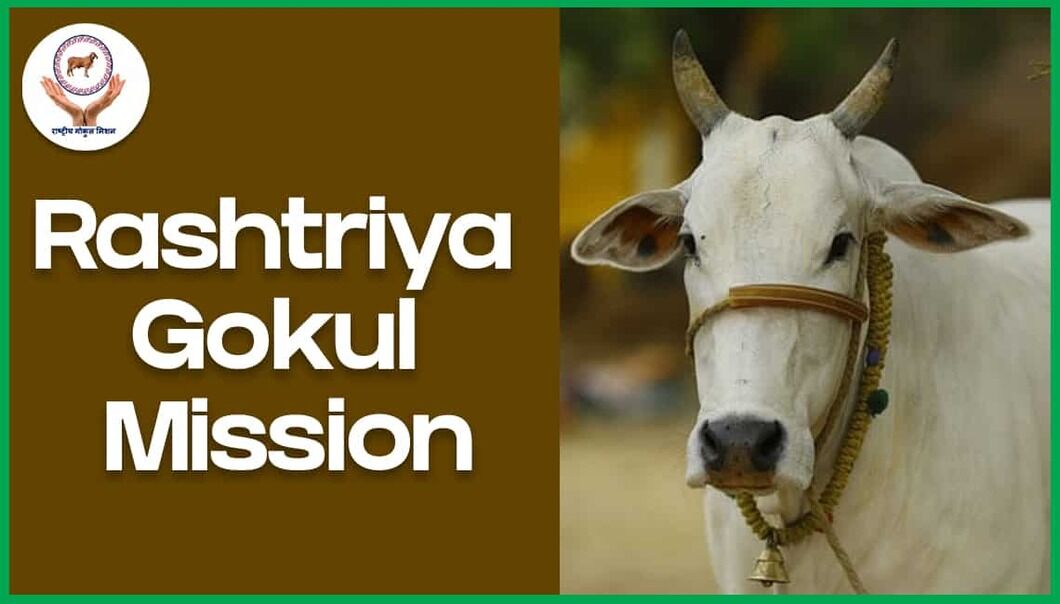
- 21 Mar 2025
In News:
The Union Cabinet has approved the implementation of the Revised Rashtriya Gokul Mission (RGM) for 2024–25 and 2025–26, with an enhanced financial outlay.
Background:
- Launched: December 2014
- Type: Central Sector Scheme under the Development Programmes
- Nodal Ministry: Ministry of Fisheries, Animal Husbandry & Dairying
- Primary Aim: Conservation and development of indigenous bovine breeds and enhancement of milk productivity through advanced breeding technologies.
Revised Allocation:
- Total Outlay: ?3,400 crore
- Additional Allocation: ?1,000 crore for 2024–25 and 2025–26
- Finance Commission Cycle: 15th (2021–22 to 2025–26)
Objectives of Revised RGM:
- Enhance productivity of bovines and sustainable milk production.
- Promote scientific breeding using high genetic merit (HGM) bulls.
- Expand Artificial Insemination (AI) coverage across India.
- Conserve indigenous cattle and buffalo breeds through genomic and reproductive technologies.
Key New Initiatives (2024–26):
- Heifer Rearing Centres:
- One-time assistance of 35% of capital cost.
- To establish 30 housing facilities with a total of 15,000 heifers.
- Interest Subvention Scheme:
- 3% interest subsidy on loans for purchasing HGM IVF heifers.
- Applicable to farmers borrowing from milk unions, banks, or financial institutions.
Major Achievements (as of 2023–24):
- Milk Production Increase: 63.55% rise in 10 years.
- Per Capita Milk Availability:
- 2013–14: 307 grams/day
- 2023–24: 471 grams/day
- Productivity Increase: 26.34% over the last decade.
Nationwide Artificial Insemination Programme (NAIP):
- Coverage: 605 districts with <50% baseline AI coverage.
- Animals Covered: 8.39 crore
- Farmers Benefitted: 5.21 crore
- Service: Free AI at farmer's doorstep.
Technological Interventions:
- IVF Labs: 22 labs set up across States and Universities.
- HGM Calves Born: 2,541 through IVF.
- Indigenous Technologies Developed:
- Gau Chip &Mahish Chip: Genomic chips by NDDB & ICAR-NBAGR.
- Gau Sort: Indian-developed sex-sorted semen technology by NDDB.
Significance:
- Strengthens Atmanirbhar Bharat in livestock genomics and AI.
- Enhances livelihoods of 8.5 crore dairy farmers.
- Preserves India’s indigenous bovine biodiversity.
- Promotes scientific cattle rearing and milk self-sufficiency.
BHIM-UPI Incentive Scheme 2024–25
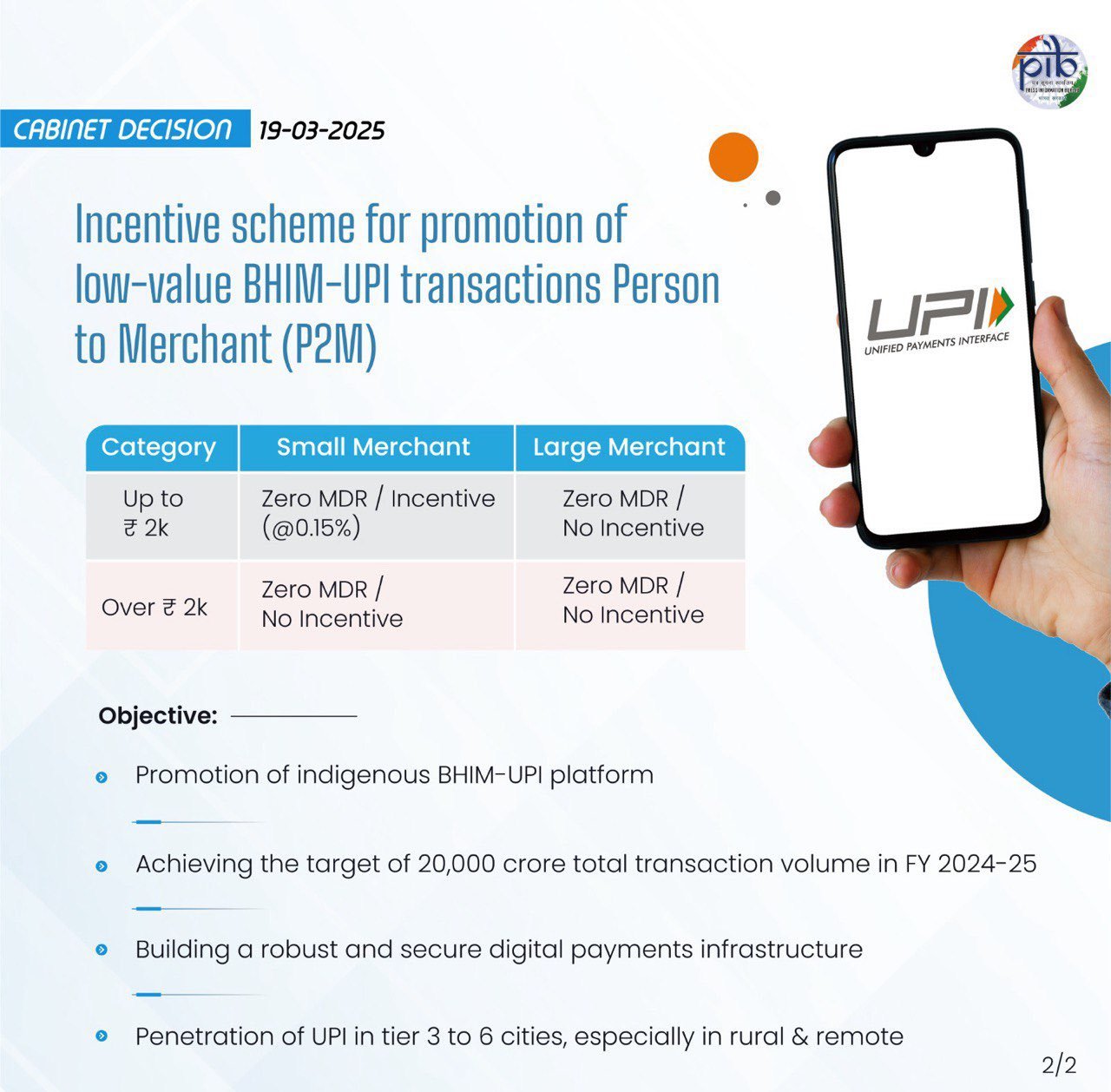
- 20 Mar 2025
In News:
The Union Cabinet, chaired by the Prime Minister, approved the Incentive Scheme for Promotion of Low-Value BHIM-UPI Transactions (Person-to-Merchant or P2M) for FY 2024–25 to encourage digital payment adoption, particularly among small merchants and in rural and remote areas.
Key Features of the Scheme:
- Duration: 1 April 2024 to 31 March 2025
- Outlay: ?1,500 crore
- Coverage: UPI (P2M) transactions up to ?2,000 for small merchants only
- Incentive Rate:0.15% per transaction value
- MDR (Merchant Discount Rate):
- Zero MDR for all UPI P2M transactions
- Incentive applicable only for small merchants on transactions ≤ ?2,000
Incentive Disbursement Conditions:
- 80% of claim amount: Paid upfront each quarter
- Remaining 20%: Conditional on:
- 10%: If acquiring bank’s technical decline < 0.75%
- 10%: If acquiring bank’s system uptime > 99.5%
Objective:
- Promote adoption of indigenous BHIM-UPI platform
- Achieve ?20,000 crore P2M transaction volume in FY 2024–25
- Expand UPI in Tier 3 to Tier 6 cities, especially rural areas
- Promote inclusive tools: UPI 123PAY (for feature phones), UPI Lite/LiteX (offline payments)
Expected Benefits:
- Cost-free UPI usage for small merchants (encouraging cashless transactions)
- Enhanced digital footprint helps merchants access formal credit
- Ensures round-the-clock availability of payment systems
- Strengthens financial inclusion and less-cash economy
- Balanced fiscal support from the government while encouraging systemic efficiency
Digital Payments Background:
- Since January 2020, MDR has been made zero for BHIM-UPI and RuPay Debit Cards via amendments to:
- Payments and Settlement Systems Act, 2007 (Section 10A)
- Income-tax Act, 1961 (Section 269SU)
- Previous incentive outlays (in ? crore):
Financial Year RuPay Debit Card BHIM-UPI Total
2021–22 432 957 1,389
2022–23 408 1,802 2,210
2023–24 363 3,268 3,631
What is BHIM-UPI?
- UPI: Real-time payment system developed by NPCI; allows instant money transfer between bank accounts via mobile apps.
- BHIM-UPI: Government-promoted UPI app launched in 2016.
- NIPL, NPCI’s international arm, is expanding UPI globally. UPI is accepted in Singapore, UAE, France, Sri Lanka, Nepal, and more.
Hmar-Zomi Clashes and Peace Efforts
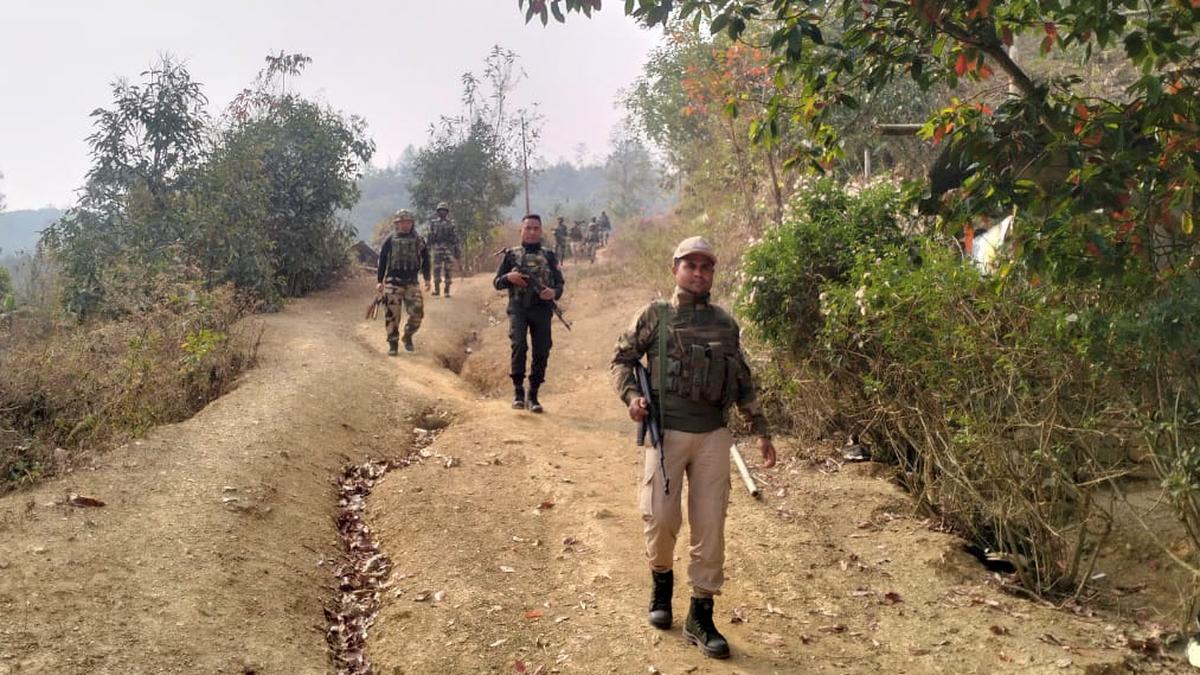
- 20 Mar 2025
In News:
Following inter-community clashes between the Hmar and Zomi tribes in Churachandpur district of Manipur, efforts have been initiated by tribal leaders to restore peace. These communities are constituents of the larger Kuki-Zo ethnic group, which has been in conflict with the non-tribal Meitei community since May 2023.
Key Developments:
- Peace Initiative:Leaders of the Hmar Inpui and Zomi Council, apex bodies of the two communities, issued a joint statement on March 18, 2025, expressing concern over the violence and agreed to:
- Lift the shutdown in Churachandpur.
- Resolve disputes through customary laws.
- Work jointly for peace and normalcy.
- Government Response:
- Restrictions under Section 163 of BNSS (BharatiyaNagarik Suraksha Sanhita) were imposed as a preventive measure.
- President’s Rule was imposed in Manipur on February 13, 2025, and the State Assembly was placed under suspended animation following Chief Minister N. Biren Singh's resignation.
Ethnographic Background
Zomi Tribe:
- Ethnic Affiliation: Tibeto-Burman (Mongoloid race).
- Distribution: Manipur, Mizoram, Nagaland, Assam; also in Myanmar and Bangladesh.
- Language: Belong to the Kuki-Chin (Kukish) group of languages.
- Religion: Predominantly Christian (Baptist, Presbyterian); formerly animistic.
- Features: Short stature, straight black hair, dark brown eyes.
Hmar Tribe:
- Ethnic Affiliation: Part of the Chin-Kuki-Mizo group, Mongoloid stock.
- Distribution: Manipur, Assam, Mizoram, Meghalaya, Tripura.
- Language: Hmar language under Kuki-Chin group (Tibeto-Burman family).
- Traditional Beliefs: Animism; now mostly Christian.
- Social Structure: Clan-based; village led by a chief called “Lal”.
- Occupation: Mainly slash-and-burn (jhum) cultivators.
- Migration History: Folk traditions trace origin to Sinlung, believed to be in China.
Audible Enclaves

- 20 Mar 2025
Context:
Audible enclaves are highly localized zones of sound that remain undisturbed by ambient noise. These allow only specific individuals—usually within a defined space—to hear the sound, even in crowded or noisy environments.
Science Behind the Concept
- Nature of Sound:Sound travels as waves through a medium, causing its particles to vibrate back and forth.
- Frequency: The rate of this vibration determines the pitch of the sound.
- Higher frequency = Higher pitch.
- Diffraction: As sound propagates, it naturally spreads out. Higher-frequency waves tend to diverge more.
- Frequency: The rate of this vibration determines the pitch of the sound.
How Audible Enclaves are created
- Parametric Array Loudspeakers:These devices emit high-frequency ultrasonic waves modulated with an audio signal. As they move through air, the waves undergo self-demodulation, converting into audible sound in a narrow, focused beam. This beam is heard only by those directly in its path.
- Advanced Audible Enclaves (New Research – 2024):A study published in the Proceedings of the National Academy of Sciences (March 17, 2024) demonstrated a more precise technique:
- Two ultrasonic waves of slightly different frequencies are emitted.
- These are inaudible on their own.
- When they intersect, non-linear acoustic interactions occur at that point.
- This generates an audible sound wave only at the intersection point, creating an enclave audible only to nearby individuals.
Applications and Relevance
- Private Communication in public places.
- Augmented Reality and targeted advertising.
- Assistive technology for the hearing-impaired.
- Security and military operations, where discreet communication is required.
Tren de Aragua
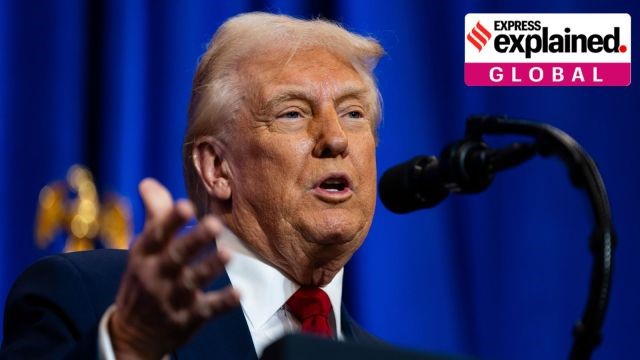
- 20 Mar 2025
In News:
In March 2025, the United States deported 261 Venezuelans, including alleged members of the violent Venezuelan gang Tren de Aragua (TdA). The deportation invoked the Alien Enemies Act of 1798, used for the first time since World War II.
What is the Tren de Aragua (TdA)?
- Origin: Formed in 2014 inside Tocorón Prison in Aragua state, Venezuela.
- Evolution: Began as a prison gang under the “pran” system—where incarcerated crime bosses operated external criminal networks.
- Operations: Expanded amid Venezuela's economic crisis (post-2017) to Colombia, Peru, Chile, and later the United States, exploiting Venezuelan migrants.
- Criminal Activities: Drug trafficking, human trafficking, extortion, murder, and kidnapping.
- International Links: Chile accused the Venezuelan regime of facilitating the murder of a former opposition officer in 2023 via TdA operatives.
Presence in the United States
- Size: Estimated 5,000 global members; only a few hundred suspected in the U.S.
- Incidents: Linked to violent crimes in New York, Florida, Texas, Pennsylvania, California, and a high-profile case in Aurora, Denver.
- Designation: Labeled a "Transnational Criminal Organization" in 2023 by the Biden administration. Assets in the U.S. frozen and a $12 million reward announced for its leaders.
Alien Enemies Act (1798):
- Purpose: Allows the U.S. President to detain, deport, or restrict foreign nationals from hostile nations during war or invasion.
- Historic Use:
- War of 1812: Used against British citizens.
- WWI & WWII: Used for surveillance, restrictions, and internment of citizens from enemy nations (Japanese, Germans, Italians).
- Post-War: Used in 1948 to deport a Nazi operative; upheld by the U.S. Supreme Court.
Controversial Invocation in 2025
- First use since WWII to target non-state criminal actors (TdA).
- The White House termed TdA a "terrorist gang" and a "direct threat to national security".
- Claimed that illegal immigration and cartel activity constituted a modern “invasion”, thereby justifying use of the Act.
- Legal Backing: The Act remains constitutional and in force unless revoked.
- Criticism: Civil rights advocates argue its use may violate due process; calls for repeal by some lawmakers due to historical misuse.
Identification of Gang Members
- Criteria (ICE Directive, 2017): Gang tattoos, prior convictions, confessions, or identification by reliable sources.
- Due Process Concerns: Migrants can be deported even if gang membership is unproven before a judge.
National Wildlife Health Policy (NWHP)

- 20 Mar 2025
In News:
In the aftermath of the COVID-19 pandemic, the Government of India is formulating the National Wildlife Health Policy (NWHP) to address the growing threat of zoonotic diseases through integrated wildlife health management. Over 60% of emerging infectious diseases in humans originate from animals, underscoring the importance of a "One Health" approach—integrating human, animal, and environmental health.
Key Objectives of NWHP
- Establish a comprehensive wildlife disease surveillance system.
- Strengthen diagnostic infrastructure and research capacity.
- Facilitate cross-sectoral collaboration among environment, agriculture, and animal husbandry ministries.
- Integrate existing animal and human health data systems with wildlife health information.
Institutional Framework & Implementation
- National Referral Centre for Wildlife (NRC-W):
- Inaugurated in Junagadh, Gujarat (March 2024).
- India’s first wildlife disease diagnostic and research centre.
- Will serve as a referral hub for investigating wildlife mortality and outbreak events.
- Wildlife Health Information System (WHIS):
- Proposed digital system for real-time disease data collection, reporting, and analysis.
- Will integrate with National Animal Disease Reporting System (NADRS) and National Animal Disease Referral Expert System (NADRES).
- Satellite Diagnostic Labs:To be established near important forest zones for timely wildlife disease detection and diagnosis.
- Community Engagement:Involves measures like cattle vaccination near national parks to reduce disease transmission risks.
Key Agencies Involved
- Central Zoo Authority (CZA): Nodal agency under the Wildlife Protection Act, 1972; responsible for policy coordination and implementation.
- Office of the Principal Scientific Adviser and IIT-Bombay: Supporting technical and policy formulation.
- Ernst & Young: Consultancy support.
- Ministry of Environment, Forest & Climate Change (MoEF&CC): Policy oversight.
Alignment with Existing Conservation Frameworks
- National Wildlife Action Plan (2017–31):
- Provides for 103 actions and 250 projects.
- Includes protocols for disease surveillance in protected areas and tiger reserves.
- Wildlife Protection Act, 1972: Provides legal basis for wildlife health regulation and zoonotic disease control.
Chhareda Panchayat Water Conservation Model
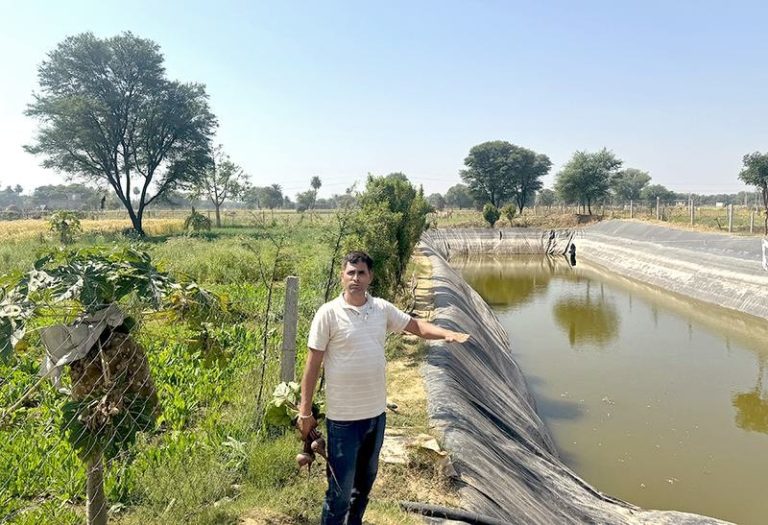
- 19 Mar 2025
In News:
Rajasthan’s Chhareda Panchayat in Dausa district has emerged as a leading example of effective water conservation, driven by a community-driven initiative that has significantly transformed agricultural practices and farmer livelihoods. The project, led by Vipra Goyal, an alumnus of IIT-Kharagpur, has revolutionized water usage in the region through the construction of 250 farm ponds.
Key Aspects:
- Objective:The model aims to address water scarcity and groundwater depletion through rainwater harvesting and the construction of farm ponds, reducing dependence on overexploited groundwater sources.
How Farm Ponds are Contributing to Water Conservation in Rajasthan
- Rainwater Harvesting:Farm ponds serve as storage systems for rainwater, minimizing reliance on deep, contaminated groundwater sources. This helps prevent the further depletion of underground water reserves.
- Year-Round Water Availability:The ponds provide consistent water supply for both kharif and rabi crops, ensuring that farmers can grow crops throughout the year without facing water shortages.
- Groundwater Conservation:By reducing the need to extract groundwater, this initiative has helped conserve approximately 30 crore litres of water annually, easing the pressure on local aquifers.
- Boosting Agricultural Productivity and Income:With reliable water sources, farmers have shifted from subsistence farming to growing cash crops, which has resulted in a collective increase of about ?5 crore in household incomes.
- Reduced Water Pollution:The initiative avoids the use of groundwater contaminated with harmful substances like arsenic and fluoride, which are prevalent in many areas of Rajasthan.
- Sustainability and Climate Resilience:The farm ponds offer a climate-resilient solution, ensuring that agriculture in water-scarce regions is sustainable even in the face of erratic rainfall patterns.
- Cost-Free Construction:The construction of the ponds has been facilitated through CSR funds and government schemes, making the project cost-free for farmers.
Huajiang Grand Canyon Bridge
- 19 Mar 2025
In News:
China is set to unveil the Huajiang Grand Canyon Bridge, a record-breaking steel truss suspension bridge that will become the world’s highest bridge. The bridge, located in Zhenfeng County, Guizhou Province, is part of the Shantou–Kunming Expressway, connecting the coastal city of Shantou with Kunming, the capital of Yunnan Province.
Key Facts about the Bridge:
- Height: The bridge will stand 625 meters (2,051 feet) above the Beipan River, 200 meters taller than the Eiffel Tower (at 330 meters).
- Length: Spanning 2,890 meters (9,482 feet) in total.
- Construction Period: Started on January 18, 2022, and took 3.5 years to complete.
- Cost: Estimated at £216 million (?2,200 crore).
- Travel Time Reduction: It will reduce the travel time across the canyon from 60 minutes to just 2 minutes.
Design and Engineering:
- Steel Framework: The steel trusses of the bridge weigh approximately 22,000 tons, about three times the weight of the Eiffel Tower.
- Engineering Feat: The bridge is a significant engineering achievement, showcasing China’s capabilities in bridge construction. The structure’s design and dramatic location are expected to attract tourists, bolstering the region’s economy.
Strategic and Economic Impact:
- The bridge is a major transportation infrastructure project aimed at improving connectivity in the remote Guizhou Province, a mountainous region that already hosts many of the world’s tallest bridges.
- Tourism and Regional Growth: Besides serving as a crucial transportation link, the bridge is expected to boost tourism and contribute to economic development in the region.
China’s Engineering Milestones:
- The Huajiang Grand Canyon Bridge surpasses the Millau Viaduct in France (343 meters), which previously held the record for the tallest bridge.
- China has been a leader in the construction of the world’s tallest bridges, further solidified by this record-breaking structure.
International Big Cat Alliance (IBCA)
- 19 Mar 2025
In News:
The International Big Cat Alliance (IBCA), a treaty-based intergovernmental organisation dedicated to the conservation of seven major big cat species, has officially signed an agreement with the Government of India, establishing India as the permanent host of its headquarters and secretariat.
Background and Launch
- Launched: April 2023 by Prime Minister Narendra Modi during the 50th anniversary celebrations of Project Tiger.
- Objective: To facilitate global cooperation for the conservation of seven big cats:Tiger, Lion, Leopard, Snow Leopard, Cheetah, Puma, andJaguar.
- The IBCA is implemented through the National Tiger Conservation Authority (NTCA) under the Ministry of Environment, Forest and Climate Change (MoEFCC).
International Status and Membership
- The IBCA became a treaty-based intergovernmental alliance after five countries ratified the framework agreement:India, Liberia, Eswatini, Somalia, andNicaragua.
- India formally joined the IBCA in September 2023.
- The alliance is open to all UN Member States, including:
- Range countries (where big cats are native), and
- Non-range countries that wish to support conservation efforts globally.
Headquarters and Agreement
- On March 28, 2024, the Union Cabinet approved the establishment of the IBCA headquarters in India.
- An agreement was signed in May 2024 between the IBCA and the Indian government, outlining:
- Privileges and immunities for IBCA personnel,
- Visa facilitation, and
- Operational and legal provisions for the headquarters.
Funding and Support
- India has committed a total of ?150 crore (2023–2028) for:
- Creating a corpus fund,
- Building infrastructure, and
- Meeting recurring expenditures over five years.
NASA’s Curiosity Rover
- 19 Mar 2025
In News:
NASA's Curiosity Rover has made a significant breakthrough by detecting carbon-bearing minerals on Mars, offering the first direct evidence of a potential carbon cycle on the planet. This finding adds a crucial piece to the puzzle of Mars' climatic and geological history.
Curiosity Rover: Mission Overview
- Launch Date: 26 November 2011
- Landing Date: 5 August 2012 (via sky crane system)
- Mission: Part of NASA’s Mars Science Laboratory (MSL) initiative
- Power Source:Radioisotope Thermoelectric Generator (RTG) using plutonium-238, unlike solar-powered predecessors
- Size and Capabilities: Approximately 3 meters long and 900 kg in weight, equipped with an onboard chemical laboratory for rock analysis
Scientific Objectives
- Investigate whether Mars ever supported microbial life
- Analyze the planet’s climatic history
- Study Martian geology, especially sedimentary layers
- Contribute data for future human missions to Mars
Key Scientific Discovery
- The finding occurred while Curiosity was exploring an ancient lakebed region in Gale Crater, over an 89-meter-long stretch.
- It drilled into sulfate-rich rocks and discovered siderite (a carbonate mineral composed of iron, carbon, and oxygen), marking the first detection of this mineral on Mars.
- Rocks containing 5–10% siderite by weight imply that substantial amounts of ancient atmospheric CO? may have been locked within the Martian crust, rather than being lost to space.
- The presence of iron oxyhydroxides in the same rocks suggests that acidic water interactions could have dissolved siderite, potentially releasing carbon dioxide back into the atmosphere—indicating a slow and limited carbon cycle on Mars.
Colossal Squid
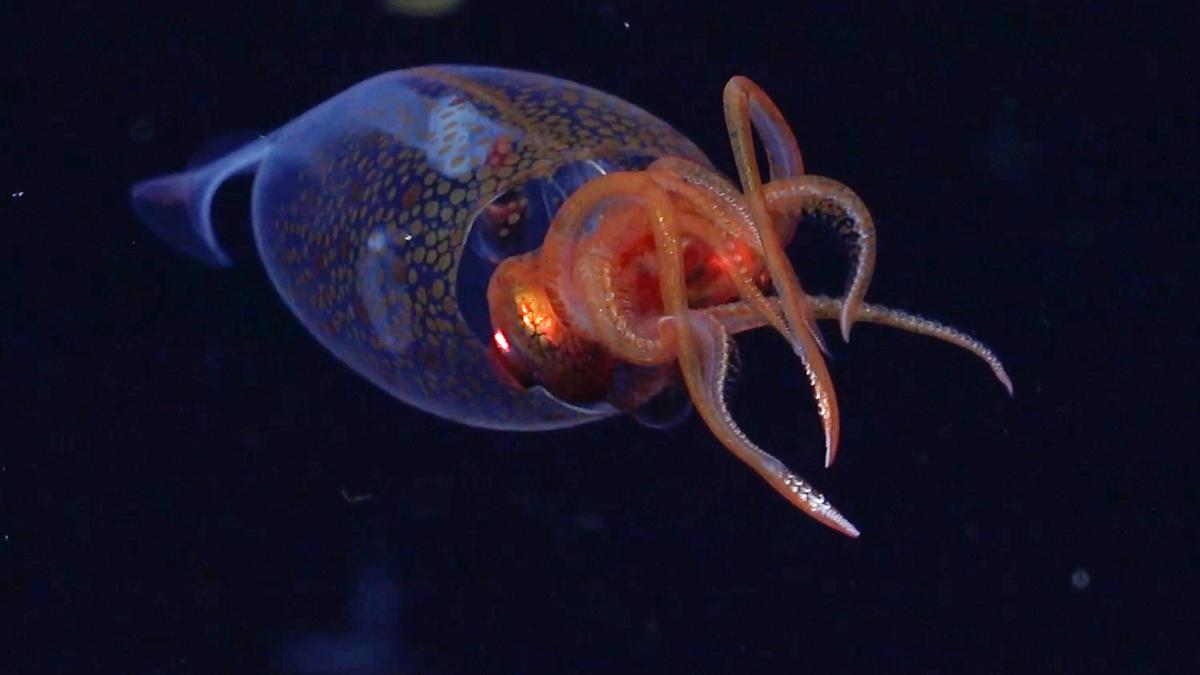
- 19 Mar 2025
In News:
In a landmark moment for marine biology, scientists have captured the first-ever footage of a colossal squid in its natural deep-sea habitat. The sighting was made by an international research team using a remotely operated submersible in the South Atlantic Ocean, near the South Sandwich Islands, and was announced by the Schmidt Ocean Institute in April 2025.
About the Colossal Squid
- Scientific Name:Mesonychoteuthishamiltoni
- Distribution: Found in the cold, deep waters of the Southern Ocean near Antarctica
- IUCN Status:Least Concern
The colossal squid is among the largest and most elusive invertebrates on Earth. The filmed specimen was a juvenile about 30 cm (1 foot) long, observed at a depth of 600 meters. However, fully grown adults can reach up to 7 meters (23 feet) in length and weigh around 500 kg.
Key Features
- Body: Tube-shaped and soft-bodied, similar to octopuses but far more massive
- Arms & Tentacles: Equipped with suckers and sharp, swivelling hooks — a feature unique to the species
- Eyes: Possess the largest eyes known in the animal kingdom, aiding visibility in the pitch-dark ocean depths
- Coloration:
- Juveniles are nearly transparent, giving them a glassy, ghost-like appearance
- Adults become opaque, with dark red or purple hues and muscular limbs
Scientific Importance & Recent Discovery
- This deep-sea sighting comes almost a century after the species was first identified, and confirms long-standing hypotheses based on carcasses found in the stomachs of whales and seabirds.
- The team is now testing improved camera systems to attempt capturing footage of an adult colossal squid in action.
Vehicle-to-Grid (V2G) Technology
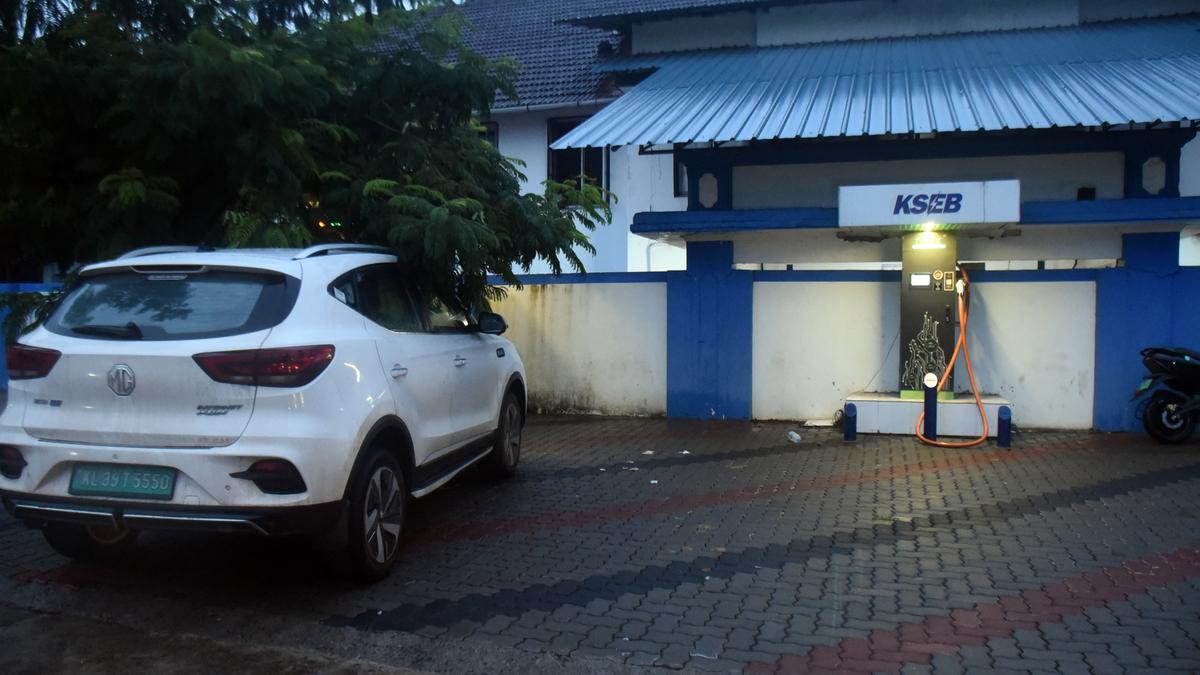
- 18 Mar 2025
In News:
Vehicle-to-Grid (V2G) is an innovative energy solution that allows Electric Vehicles (EVs) to not only draw power from the grid (charging) but also send excess stored electricity back to the grid (discharging) when not in use. This bi-directional energy flow creates a unique opportunity to support grid stability, especially when renewable energy (RE) sources like solar and wind are intermittent. When connected via bi-directional chargers, EV batteries can act as decentralized storage systems, offering a potential solution to address the challenges posed by renewable energy integration and peak demand periods.
Global Adoption and Benefits of V2G
V2G technology has gained significant traction in developed EV markets like Europe and the U.S., where it is seen as a cost-effective solution for distributed energy storage.
- In the U.K. and the Netherlands, EV owners are compensated for supplying excess energy to the grid, particularly during peak hours.
- In California, EVs are integrated into the ancillary services market, helping improve grid reliability.
- Additionally, V2G technologies have shown promise in offering emergency power during natural disasters and grid failures, proving to be an essential tool for enhancing grid resilience.
V2G in India: Current Status and Challenges
In India, V2G technology is still in its nascent stages. While there is a growing adoption of EVs and charging infrastructure, integrating these vehicles into the national grid remains a challenge. The electricity market in India is not yet fully equipped to support decentralized energy solutions like V2G. The current grid structure, characterized by variable RE generation and mismatches in supply and demand, requires significant regulatory and structural changes for successful V2G integration.
The Kerala State Electricity Board (KSEB) and the Indian Institute of Technology Bombay (IIT Bombay) have launched a pilot V2G project to assess the feasibility of this technology in the state. This project will explore how EVs can help support grid demand during peak hours, particularly when solar energy generation is low, as Kerala experiences both rapid EV adoption and increasing rooftop solar installations.
Key Features of V2G
- Charging (G2V): When an EV is charged, it functions as a load on the grid. This process can be managed through Time of Use (ToU) electricity tariffs, which incentivize charging during off-peak hours to reduce grid stress.
- Discharging (V2G): When EV batteries discharge power back to the grid, they act as distributed energy resources. This is especially valuable during periods of high demand or when renewable energy generation is insufficient.
- Decentralized Energy Storage: V2G enables EVs to serve as decentralized storage units, reducing the dependency on centralized storage systems and making the grid more resilient and efficient.
Advantages for the Indian Power Sector
- Grid Stability: V2G can help modulate the power flow in the grid by reducing the impact of variable RE generation. It also helps to stabilize grid operations during peak demand periods.
- Support for Renewable Energy: By enabling EVs to store excess solar energy during the day, V2G can assist in using this stored power during nighttime or when renewable energy generation is low, contributing to true decarbonization.
- Smart Charging: Integrating V2G with smart charging systems can help optimize energy use, ensuring that EVs charge during periods of high renewable energy generation and discharge during peak demand.
Potential for Wider Adoption
The Kerala pilot project is expected to pave the way for broader V2G implementation across India. The project aims to test how EVs can provide support during peak demand, particularly when solar power generation is unavailable. The integration of smart charging solutions and V2G will help mitigate concerns about increasing electricity demand due to the growing number of EVs. Additionally, incentives for EV owners to participate in V2G systems can lead to cost-effective solutions for grid management.
The Indian government, through the Central Electricity Authority (CEA), has already initiated steps to frame guidelines for reverse charging (V2G). With the increasing adoption of EVs and solar power, V2G has the potential to become a cornerstone of India's energy future.
Operation ATALANTA

- 18 Mar 2025
In News:
The European Union Naval Force (EUNAVFOR) Operation ATALANTA has proposed a significant joint anti-piracy naval exercise with the Indian Navy, scheduled for the end of May 2025. This initiative reflects the growing strategic cooperation between India and the European Union in maritime security, particularly in the Western Indian Ocean and the Red Sea.
Key Highlights
Proposed Exercise:
- The exercise, if approved, will involve two European warships and the Indian Navy practicing advanced counter-piracy operations, tactical manoeuvres, and inter-naval communications.
- This drill goes beyond the routine Passage Exercises (PASSEX) and aims to enhance interoperability, coordination, and mutual confidence between the two navies.
Strategic Objectives:
- Strengthen maritime security in the Indian Ocean, ensuring it remains a free, open, sustainable, and inclusive area.
- Address resurgent piracy threats, especially off the Horn of Africa, amid ongoing instability in the Red Sea due to Houthi rebel activity.
- Build operational synergy to respond swiftly to piracy incidents-EUNAVFOR claims the capability to tackle pirate cases within 48–72 hours.
Recent Developments:
- Piracy incidents near the Horn of Africa have declined recently, but the threat persists, necessitating continued vigilance and cooperation.
- In 2024, joint anti-piracy efforts led to the apprehension of 70 suspected pirates, with the Indian Navy responsible for 44 captures.
- The Indian Navy is recognized as a major actor in the region, with both sides regularly coordinating through maritime information fusion centers.
Operation ATALANTA: Overview
Aspect Details
Launch Year 2008
Initial Focus Preventing piracy and armed robbery off the Somali coast
Expanded Mandate - Protecting World Food Programme (WFP) vessels
- Enforcing UN arms embargo on Somalia
- Monitoring drug and arms trafficking
- Combating Illegal, Unreported, and Unregulated (IUU) fishing
- Disrupting illicit charcoal trade
Area of Operations Western Indian Ocean and Red Sea
Recent Activities - Joint drills with Indian Navy
- Successful coordination in anti-piracy operations, e.g., MV Ruen hijacking
India–EU Maritime Engagement: Significance
- Geopolitical Context:
- The Indian Ocean is a critical global trade route, and its security is vital for international commerce.
- The resurgence of piracy and instability in the Red Sea has heightened the need for robust maritime partnerships.
- Strategic Partnerships:
- The EU and India share a vision of maintaining maritime order and security.
- The vastness of the Indian Ocean requires significant assets and robust logistics, making cooperation essential.
- Professional Interactions:Encounters with other navies, including China, are described as professional, underscoring the importance of multilateral engagement.
Hyperloop Project

- 18 Mar 2025
In News:
India is moving closer to realizing ultra-high-speed transportation with the development of indigenous Hyperloop technology. The Ministry of Railways, has announced that Integral Coach Factory (ICF), Chennai will develop the electronics component for the country’s Hyperloop initiative. This decision follows promising test results at IIT Madras, which hosts the longest Hyperloop testing facility in Asia.
What is Hyperloop?
Hyperloop is a next-generation, ultra-fast transportation system that combines magnetic levitation (maglev) and near-vacuum tubes to enable passenger pods to travel at speeds up to 1,220 km/h. It was first proposed by Elon Musk in 2013 through the Hyperloop Alpha white paper and has since evolved into a global open-source research initiative.
Working Mechanism:
- Low-pressure tubes drastically reduce air resistance.
- Magnetic levitation allows pods to float without touching surfaces, minimizing friction.
- Electromagnetic propulsion moves pods forward efficiently.
Key Features:
- Highly energy-efficient and sustainable, with low emissions.
- Can surpass air travel speeds on shorter routes.
- Reduces road congestion, travel time, and noise pollution.
India’s Hyperloop Developments:
- Institutions Involved:
- IIT Madras – Developed the 410-meter test facility.
- Avishkar Hyperloop Team – Leading design and innovation.
- ICF Chennai – To develop electronics and technical components.
- Government Support:
- The Railway Ministry has provided financial and technical support.
- The testing system uses fully indigenous technology.
Challenges Ahead:
Despite its promise, Hyperloop faces significant hurdles:
- High infrastructure costs.
- Technical challenges in maintaining vacuum conditions.
- Safety concerns due to the high speed and pressure system.
Sarthi and Pravaah Initiatives
- 18 Mar 2025
In News:
The Reserve Bank of India (RBI) was awarded the Digital Transformation Award 2025 by Central Banking (UK) for its in-house digital innovations — Sarthi and Pravaah — marking a significant step in the digitization of internal and external regulatory processes.
Sarthi System (Launched January 2023)
- Objective: Digitize RBI’s internal workflows and reduce reliance on paper-based systems.
- Key Features:
- Secure document storage and sharing for over 13,500 employees across 40+ locations.
- Enhanced record management and data analysis through dashboards and reports.
- Automation of internal tasks such as approvals, tracking, and documentation.
- Support Infrastructure:
- SarthiPathshala: Online and in-person training module for staff.
- SarthiMitras: Designated personnel in each office to provide user assistance.
Pravaah System (Launched May 2024)
- Objective: Facilitate external submission of regulatory applications digitally.
- Key Features:
- Integration with Sarthi for streamlined processing.
- Supports 70+ regulatory application types across 9 departments.
- Enhanced efficiency, transparency, and real-time tracking.
- Centralized cybersecurity and monitoring framework.
- Impact:
- 80% increase in monthly application submissions.
- Major reduction in delays caused by manual and paper-based procedures.
Significance
- Reflects India’s push toward governance digitization and institutional efficiency.
- Demonstrates how indigenous technology solutions can modernize financial regulation and public administration.
Shishtachar Squads
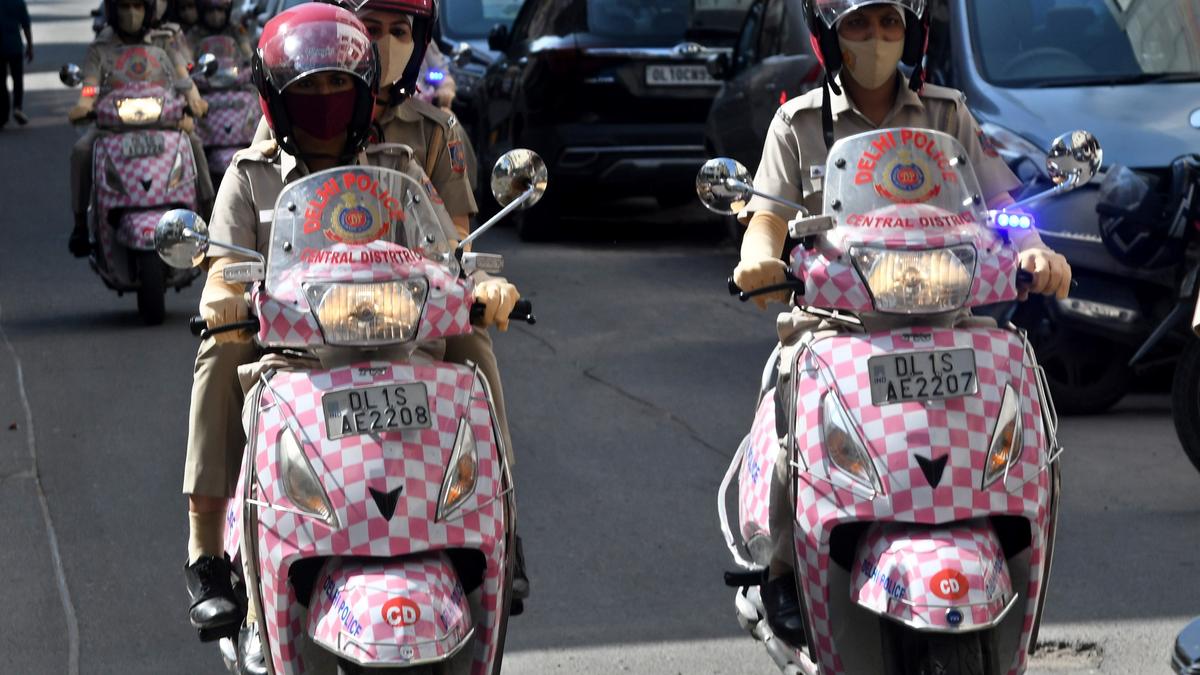
- 18 Mar 2025
In News:
To enhance women's safety in public spaces, Delhi Police has launched district-wise Shishtachar Squads, a dedicated initiative to curb eve-teasing and harassment. The move comes in line with the Bharatiya Janata Party’s pre-poll promise and is inspired by Uttar Pradesh’s Anti-Romeo Squads.
Key Features:
- Purpose: To prevent, intervene, and assist in cases of sexual harassment against women in public areas.
- Deployment: 30 squads have been formed across Delhi, with at least two squads in each district.
- Composition: Each 12-member squad includes:
- 1 Inspector (Head)
- 1 Sub-Inspector
- 4 Female Constables
- 5 Male Constables
- 1 Constable from the Anti-Auto Theft Squad (technical support)
- Supervision: Squads function under the ACP of the district's Crime Against Women (CAW) Cell.
Operational Strategy:
- Patrolling: Daily drives in at least two vulnerable spots identified by District DCPs.
- Surprise Checks: Plainclothes officers inspect public transport and engage with DTC staff, market associations, and RWAs.
- Victim-Centric Approach: Emphasis on sensitive handling of cases, ensuring swift action under relevant provisions of the Bharatiya Nyaya Sanhita (e.g., Sections 74 for molestation and 78 for stalking).
- Monitoring:
- Weekly Reports by ACP-CAW submitted to the DCP of the Special Police Unit for Women and Children (SPUWAC).
- Monthly Evaluations based on feedback from schools, RWAs, MWAs, and control rooms.
India’s Space Docking Capability
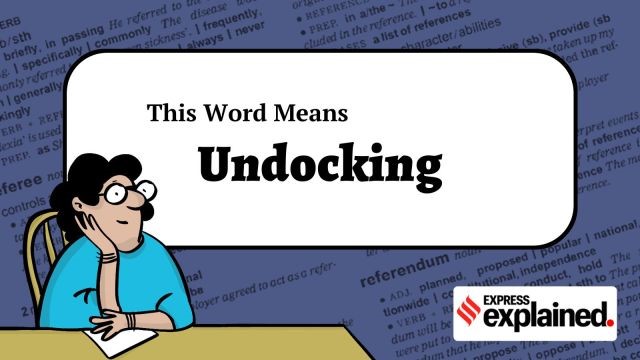
- 17 Mar 2025
In News:
Recently, ISRO successfully demonstrated autonomous space docking and undocking with its Space Docking Experiment (SpaDEx), making India the fourth country—after the USA, Russia, and China—to achieve this advanced space capability.
Two satellites, SDX01 (Chaser) and SDX02 (Target), were launched into a 470 km orbit. From a starting separation of 20 km, they were autonomously maneuvered, docked using an indigenous androgynous docking mechanism, and later undocked after two months of in-orbit operation.
What is Space Docking and Why It Matters?
Docking is the process where two spacecraft in orbit are brought together and joined. Undocking is the controlled separation of these joined vehicles. These procedures are vital for:
- Assembling large structures (e.g., space stations) in orbit, bypassing launch weight limits.
- Orbital servicing of satellites (repairs, refueling).
- Interplanetary missions requiring in-space assembly and resupply.
- Crewed missions to space stations and planetary bodies (e.g., Moon, Mars).
Historical Context
- 1966 (USA): First manual docking by NASA’s Gemini VIII (Neil Armstrong with Agena).
- 1967 (USSR): First autonomous docking using Kosmos 186 & 188.
- 2011–12 (China): First unmanned and then crewed docking.
- 2025 (India): Successful autonomous docking and undocking via SpaDEx.
Strategic and Technological Significance for India
Future Missions:
- BharatiyaAntariksh Station (BAS) by 2035 and Human Moon Mission by 2040 will rely heavily on in-orbit docking and assembly.
- Chandrayaan-4, aiming to return lunar samples, will use docking systems for orbital rendezvous and return modules.
Global Space Economy
- Positions ISRO as a leader in modular satellite design, orbital assembly, and international collaborations.
- Enables NewSpace India Ltd. (NSIL) to attract commercial contracts for space stations, satellite servicing, and deep-space ventures.
Domestic Technological Advancements
- Promotes indigenous innovation in docking systems, AI-driven autonomous navigation, robotics, and in-space power sharing.
- Supports R&D in microgravity, space manufacturing, and even space agriculture (e.g., orbital seed germination experiments).
Strategic and Diplomatic Impact
- Enhances India’s soft power and strengthens ties with space agencies like NASA and ESA.
- Contributes to space security by enabling orbital refueling and satellite servicing during emergencies.
- Offers collaborative platforms for BRICS and developing countries through BAS.
Capacity Building
- Encourages STEM education and youth engagement via initiatives like YUVIKA.
- Expands India’s aerospace industrial base, creating skilled jobs and fostering innovation.
Birefringence

- 17 Mar 2025
Context:
Birefringence, or double refraction, is an optical phenomenon observed in certain anisotropic materials where a single light ray splits into two rays upon entering the material. Each ray travels at a different speed and experiences a different refractive index based on the direction of light propagation and its polarization.
Refraction vs Birefringence
- Refraction is the bending of light as it passes from one medium to another due to a change in speed. It is governed by the refractive index, defined as the ratio of the speed of light in a vacuum to its speed in the medium.
- Birefringence occurs when a material has multiple refractive indices in different directions, causing light to split into two rays.
Key Terms
- Refractive Index:
- Vacuum: 1
- Air: ≈1.0003
- Glass: ≈1.5
- Diamond: ≈2.4
- Polarization: The direction in which the light’s electric field oscillates. It influences how light behaves in birefringent media.
Types of Materials
- Isotropic Materials:
- Structure is uniform in all directions.
- Refractive index is the same regardless of direction.
- Examples: Glass, Sodium Chloride (NaCl).
- Anisotropic Materials:
- Structure varies along different crystal axes.
- Show different refractive indices in different directions.
- Exhibit birefringence.
- Examples: Calcite, Quartz, Mica, Tourmaline.
Sources of Birefringence
- Natural Birefringent Materials: Calcite, Mica, Quartz.
- Synthetic Birefringent Materials: Barium borate, Lithium niobate.
- Induced Birefringence: Can be generated by applying mechanical stress, electric, or magnetic fields to otherwise non-birefringent materials.
Applications of Birefringent Materials
- Liquid Crystal Displays (LCDs)
- Medical and Polarising Microscopes
- Optical Switches and Waveplates
- Laser Technology
- Nonlinear Optics (e.g., Frequency Converters)
U.S. airstrikes in Yemen
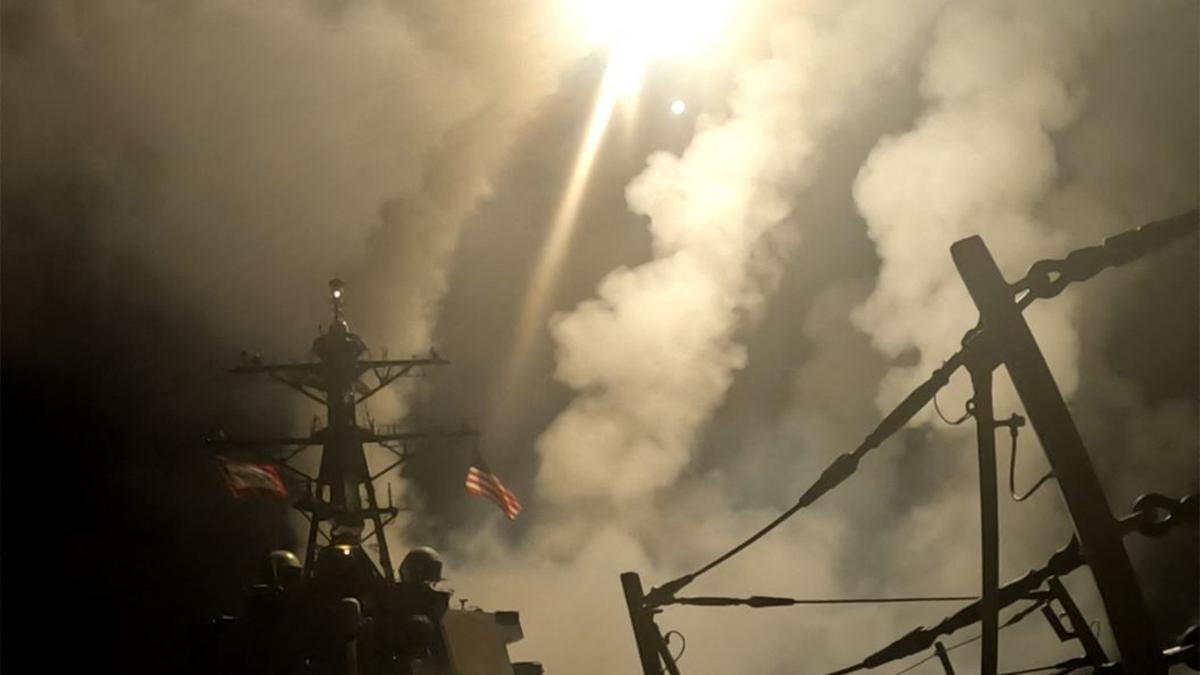
- 17 Mar 2025
In News:
In March 2025, the United States launched a series of airstrikes on Houthi-controlled areas in Yemen, targeting bases, missile defenses, and key leadership. The operation aimed to neutralize threats to international shipping and assert freedom of navigation through the vital Bab-el-Mandeb Strait. The Houthis, backed by Iran, vowed retaliation, intensifying tensions in an already volatile region.
Who are the Houthis?
- Sect and Origin: Houthis belong to the Zaidi Shia sect, primarily based in Yemen’s northwestern Sa’dah province. The movement originated in the 1990s as a sociopolitical rebellion against President Ali Abdullah Saleh’s regime.
- Role in Yemen’s Civil War: Since 2014, the Houthis have controlled large parts of Yemen, including the capital, Sana’a. They are one of the main belligerents in the civil war, opposing the internationally recognized Yemeni government (backed by Saudi Arabia and the U.S.).
- Foreign Links: The Houthis are aligned with Iran and are considered part of the Iran-led "Axis of Resistance" opposing Israel and Western interests in West Asia.
Geopolitical Importance of Yemen
- Strategic Location: Yemen borders Saudi Arabia and Oman and has coastlines along the Red Sea, Gulf of Aden, and Arabian Sea.
- Bab-el-Mandeb Strait: This narrow maritime chokepoint between Yemen and Djibouti is a crucial link between the Indian Ocean and the Mediterranean Sea (via the Suez Canal and Red Sea).
- It is essential for global oil shipments and international maritime trade.
- Disruptions here threaten energy security and commercial shipping routes.
U.S. Justification and Objectives
- Freedom of Navigation: The U.S. stated that the strikes aimed to protect commercial and naval vessels from attacks and ensure navigational freedom.
- Military Goal: According to U.S. officials, the campaign will continue until the Houthis lose the capability to threaten global shipping.
Regional Reactions
- Iran: Strongly condemned the U.S. airstrikes, asserting that Washington had no authority to dictate West Asian security dynamics.
- Houthi Response: Warned of retaliation, indicating a potential escalation in the Red Sea and Arabian Peninsula.
Mudumal Megalithic Menhirs
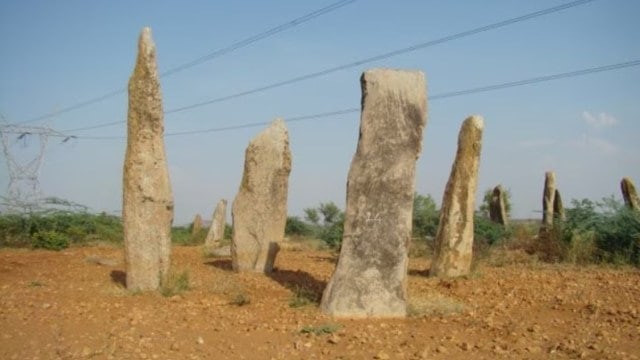
- 17 Mar 2025
In News:
The Mudumal Megalithic Menhirs of Narayanpet district, Telangana have been included in India’s UNESCO Tentative World Heritage Sites list in 2025, highlighting their archaeological, cultural, and astronomical significance. Telangana now has two tentative UNESCO heritage sites, the first being the Ramappa Temple (inscribed in 2021).
What are Menhirs and Megaliths?
- Menhirs are large, upright standing stones, often tapered at the top, used by prehistoric communities.
- They served ritual, memorial, or astronomical purposes and are found globally, with prominent examples in Europe such as Stonehenge (UK) and Carnac (France).
- Megaliths refer broadly to prehistoric stone structures, used for burials (like dolmens, cairns, cists) or as commemorative monuments (like menhirs).
- In India, megalithic culture thrived during the Iron Age (c. 1500 BCE–500 BCE), especially in the Deccan Plateau (Maharashtra, Karnataka, Tamil Nadu, Kerala, Andhra Pradesh, Telangana).
Significance of the MudumalMenhirs
- Age: Estimated to date back 3,500–4,000 years (1000 BCE–300 BCE).
- Site extent: Spread across 80 acres near the Krishna River, the site comprises:
- Around 80 large menhirs (10–14 feet tall).
- Nearly 3,000 alignment stones set in rows, believed to represent funerary rites and astronomical alignments.
- Astronomical importance: The alignments correspond with solar events such as solstices and equinoxes.
- A unique cup-marked stone represents the Ursa Major (Saptarshi) constellation—South Asia’s earliest known star depiction.
- Suggests advanced prehistoric knowledge of celestial navigation and calendar calculation.
Cultural and Living Traditions
- The site continues to hold spiritual value among locals.
- Menhirs are revered as "NilurallaThimmappa" (Thimmappa of the Standing Stones).
- One stone is worshipped as Goddess Yellamma, blending ancient heritage with living cultural practices.
Path Toward UNESCO World Heritage Status
- The MudumalMenhirs are among six sites added to India’s Tentative List in 2025, alongside:
- Kanger Valley National Park (Chhattisgarh)
- Ashokan Edict Sites (Multiple States)
- Chausath Yogini Temples (MP & Odisha)
- Gupta Temples (Multiple States)
- Palace-Fortresses of the Bundelas (MP & UP)
- India now has 62 sites on the Tentative List, a prerequisite for UNESCO nomination.
Subacute Sclerosing Panencephalitis (SSPE)
- 17 Mar 2025
In News:
Subacute Sclerosing Panencephalitis (SSPE) has emerged as a public health concern in Uttar Pradesh, particularly in Lucknow, due to poor measles vaccination coverage. Despite being rare globally, cases remain alarmingly high in regions with incomplete immunisation.
About SSPE:
- SSPE is a progressive and fatal neurological disorder that appears several years after a person has recovered from measles (rubeola).
- It is caused by a persistent measles virus in the brain, which triggers chronic inflammation and gradual destruction of nerve cells.
- Though globally rare, SSPE is more prevalent in areas with low immunisation rates. Males and children from low-income families are more commonly affected.
Symptoms:
- Early signs: cognitive decline, poor academic performance, behavioural changes (irritability, hallucinations), and sleep disturbances.
- Progression: seizures, involuntary muscle jerks, speech deterioration, visual impairment, and motor dysfunction.
- Advanced stage: muscle rigidity, difficulty swallowing, risk of aspiration pneumonia, coma, and eventual death.
Treatment & Prevention:
- No cure exists, and the mortality rate approaches 100%.
- Treatment focuses on symptom management; antiviral and immune-boosting drugs may slow progression.
- Timely measles vaccination is the only effective prevention strategy.
Significance for Public Health:
- SSPE underscores the critical importance of achieving universal immunisation coverage.
- Experts recommend stronger awareness campaigns and better enforcement of the Universal ImmunisationProgramme (UIP) to eliminate measles and prevent SSPE.
Maritime Security Belt 2025
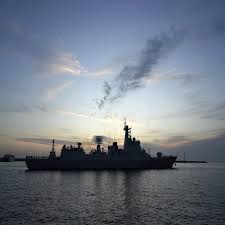
- 16 Mar 2025
In News:
Amid rising tensions over Iran’s expanding nuclear program and threats from Yemen's Houthi rebels, China, Iran, and Russia conducted the Maritime Security Belt 2025 naval exercise in the Gulf of Oman, strategically located near the Strait of Hormuz. This region is of global significance as it serves as a major maritime route, through which a fifth of the world’s crude oil is transported daily.
Key Highlights of the Exercise
- Location: Gulf of Oman, near the Strait of Hormuz, connecting the Persian Gulf to the open seas. This waterway is crucial for global energy supplies and trade.
- Participating Navies:
- Iran: State-run media highlighted the drills as a show of strength, particularly after Israeli strikes targeted Iran’s defense and missile programs.
- Russia: Participated with corvettes Rezky and Aldar Tsydenzhapov as well as the tanker Pechenega. Russia continues to rely on Iran for drone supplies, particularly in the ongoing war in Ukraine.
- China: Sent guided-missile destroyer Baotou and supply ship Gaoyouhu. China maintains deep ties with Iran, especially in the oil sector, despite facing Western sanctions.
- Operational Objectives:
- The exercise aimed to enhance coordination and operational synergy between the three nations, with a focus on maritime security, countering threats to shipping lanes, and addressing global security challenges.
- It featured live-fire drills, night operations, and complex naval maneuvers, ensuring the readiness of all three navies to respond to maritime threats.
- Regional Significance: The Gulf of Oman serves as the only maritime access for Iran to the open seas, making it critical for global trade. The Strait of Hormuz is particularly significant as it handles a significant portion of the world’s oil trade.
Strategic Context and Implications
- Nuclear Tensions: Iran's nuclear program, which has drawn concerns from both Israel and the U.S., remains a central issue in the region. The exercises coincide with the growing concerns over Iran’s stockpiling of uranium enriched to near weapons-grade levels, despite Tehran's assertions that its nuclear ambitions are peaceful.
- Impact of Drills: These joint naval exercises highlight the growing influence of China and Russia in the Middle East, both of which have strategic ties with Iran. While these countries do not patrol the wider Middle East region, their naval presence in the Gulf signals their deepening involvement in the region’s security dynamics, particularly in opposition to the U.S.-led presence.
- Yemen's Role: The Houthi rebels in Yemen have previously targeted international shipping in the Red Sea and Bab el-Mandeb Strait, and have threatened to resume attacks unless humanitarian aid is allowed into Gaza. The instability in the region further complicates security, as seen in the potential for maritime disruptions.
Geopolitical Dimensions
- China’s Interests: China, as a major consumer of Iranian crude oil, continues to engage with Iran despite facing Western sanctions. These drills serve as a symbol of China’s increasing military presence and its growing role in the Middle East, particularly in energy security.
- Russia’s Involvement: Russia's reliance on Iran for bomb-carrying drones in the Ukraine conflict further deepens the military relationship between the two nations. The maritime drills highlight Russia’s interest in securing its position in the Middle East amidst growing tensions with the West.
- U.S. Interests: The U.S., which monitors the region through its 5th Fleet based in Bahrain, remains cautious of the growing military cooperation between China, Russia, and Iran. The drills, especially the interference with GPS systems, have raised concerns about regional stability and the ability to ensure free navigation through critical maritime chokepoints.
Bongosagar 2025 Naval Exercise

- 16 Mar 2025
In News:
India and Bangladesh conducted the Bongosagar 2025 naval exercise in the Bay of Bengal, aimed at enhancing maritime cooperation, operational interoperability, and regional security. This joint exercise aligns with India's maritime foreign policy doctrine — SAGAR (Security and Growth for All in the Region).
Key Highlights
- Participants:
- Indian Navy: INS Ranvir, a Rajput-class guided missile destroyer, commissioned in 1986.
- Bangladesh Navy: BNS Abu Ubaidah.
- Objectives:
- Strengthen tactical planning, information sharing, and coordinated response capabilities.
- Enhance interoperability for seamless maritime operations.
- Reinforce regional trust and cooperation under the SAGAR framework.
- Exercise Components:
- Surface firing drills
- Tactical manoeuvres
- Underway replenishment
- VBSS (Visit, Board, Search and Seizure) operations
- Cross-deck boarding exercises
- Communication drills
- Professional knowledge quizzes and steam past ceremonies
Strategic Significance
- Supports India’s SAGAR initiative (2015), promoting security and growth in the Indian Ocean region.
- Aligns with the broader MAHASAGAR (2025) vision — Mutual and Holistic Advancement for Security and Growth Across Regions — targeting deeper engagement with the Global South.
- Enhances the ability of both navies to counter maritime threats, uphold freedom of navigation, and ensure regional maritime stability.
India-Bangladesh Defence Cooperation
- Army-level: Exercise Sampriti
- Navy-level: Exercises Bongosagar and Coordinated Patrol (CORPAT)
India’s Carbon Credit Trading Scheme (CCTS)
- 16 Mar 2025
In News:
To meet its climate commitments under the Paris Agreement, India is moving towards a market-based mechanism for emissions reduction through the Carbon Credit Trading Scheme (CCTS), 2023. The scheme was made possible by amending the Energy Conservation Act, 2021 and replaces the Perform, Achieve, and Trade (PAT) scheme operational since 2012.
What is the Carbon Credit Trading Scheme (CCTS)?
- CCTS is India’s version of an emissions trading system (ETS) designed to reduce greenhouse gas (GHG) emissions intensity — emissions per unit of output — rather than absolute emissions.
- It introduces Carbon Credit Certificates (CCC), each representing one tonne of CO? equivalent (tCO?e) reduction.
- Managed by the Bureau of Energy Efficiency (BEE) and coordinated by a National Steering Committee, the scheme involves various regulatory bodies including electricity exchanges, MoEFCC, and the Central Electricity Regulatory Commission.
Key Features of the CCTS
Aspect Description
Transition from PAT - Shifts focus from energy efficiency (PAT) to emission intensity (CCTS).
Coverage - Initially targets energy-intensive sectors: Iron & Steel, Cement, Aluminium,
Fertilisers, Refineries, Pulp & Paper, and Textiles (~16% of national
GHG emissions). Power sector (~40%) may be included later.
Dual Mechanisms - 1. Compliance: Mandates targets for large emitters. 2. Offset:
Voluntary participants earn credits by reducing emissions.
Implementation Timeline - Expected to launch fully by mid-2026, in a phased manner.
Global Context of Carbon Pricing
- As of June 2024, 89 countries operate carbon pricing mechanisms, covering 12.8 Gt CO?e (25% of global emissions).
- Carbon pricing methods:
- ETS (Cap-and-Trade / Baseline-and-Credit): Companies trade allowances or credits based on performance.
- Carbon Tax: Fixed price on emissions; provides cost certainty but not emissions certainty.
- Crediting Mechanism: Projects generating verified emission reductions earn tradable carbon credits.
Challenges in Implementing CCTS
- Target Setting: Overly lenient targets may cause credit oversupply, reducing prices; overly strict ones risk high compliance costs.
- Compliance Gaps: Under PAT, over half the required energy certificates were never purchased, with no penalties imposed.
- Delays: Credit issuance under PAT (Phase IV onwards) has been delayed since 2021, affecting market confidence.
- Transparency: Lack of public access to data on actual performance undermines accountability.
- Monitoring and Verification (MRV): Requires robust systems to prevent double counting and ensure credible reporting.
Steps to Strengthen India’s Carbon Market
- Align with global practices: Learn from the EU ETS — implement strict monitoring, gradual tightening of caps, and price stability mechanisms.
- Robust MRV Framework: Ensure accuracy in emission data to boost trust.
- Digital Trading Platform: Track and authenticate credit transactions; avoid fraud.
- Industry Incentives: Encourage early compliance via tax benefits and access to green finance.
- Trade Compatibility: Prepare for global measures like the EU’s Carbon Border Adjustment Mechanism (CBAM) by ensuring transparency and comparability.
India’s CCTS represents a significant shift in climate governance by institutionalizing carbon pricing. While it brings India in line with evolving global practices, the success of the Indian carbon market will depend on credible enforcement, transparent functioning, and strong regulatory architecture. If implemented effectively, it can drive low-carbon growth and support India’s target of reducing emissions intensity by 45% by 2030.
India's Foreign Exchange Reserves witness sharpest rise in two years
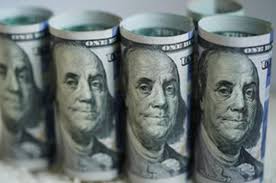
- 16 Mar 2025
In News:
In a notable economic development, India’s foreign exchange (forex) reserves rose sharply by $15.267 billion to reach $653.966 billion during the week ending March 7, 2025. This marks the largest weekly increase in over two years, as per data released by the Reserve Bank of India (RBI).
Key Reason for the Surge
- The jump is attributed primarily to a $10 billion forex swap conducted by the RBI on February 28, 2025, where the central bank purchased US dollars in exchange for rupees.
- The objective was to inject liquidity into the domestic financial system while strengthening forex reserves.
Component-wise Breakdown
- Foreign Currency Assets (FCA): Increased by $13.993 billion to $557.282 billion.
(FCAs are held in major currencies like USD, Euro, Pound, Yen and are affected by their exchange rate fluctuations.) - Gold Reserves: Decreased by $1.053 billion to $74.325 billion.
- Special Drawing Rights (SDRs): Rose by $212 million to $18.21 billion.
- Reserve Tranche Position (RTP) with IMF: Declined by $69 million to $4.148 billion.
Understanding Forex Reserves
- Foreign Exchange Reserves are external assets held by a country's central bank, used to support its monetary and exchange rate policies.
- These reserves include:
- Foreign Currency Assets (FCA)
- Gold
- SDRs (with the International Monetary Fund)
- RTP (Reserve capital with the IMF)
Purpose and Importance
- Ensure external stability and maintain confidence in the currency.
- Help manage the exchange rate and balance of payments (BoP).
- Act as a buffer against external shocks, such as volatile capital flows or currency crises.
- Strengthen India’s international creditworthiness.
Global Context
- RBI is the custodian of India’s forex reserves.
- China holds the largest forex reserves globally.
India’s First CAR T-Cell Therapy

- 16 Mar 2025
In News:
India has achieved a significant milestone in cancer treatment with the successful clinical trials of its first CAR T-cell therapy, marking a crucial step in indigenous biomedical innovation. The findings were recently published in The Lancet, making it the first CAR T-cell clinical trial from India to appear in an international journal.
What is CAR T-Cell Therapy?
- CAR T-cell therapy (Chimeric Antigen Receptor T-cell therapy) is a form of immunotherapy where a patient’s own T-cells are genetically modified to identify and destroy cancer cells.
- Primarily used for blood cancers, especially those unresponsive to first-line treatments, such as:
- Acute Lymphoblastic Leukemia (ALL)
- Large B-cell Lymphoma
Indian Breakthrough
- Developed by ImmunoAct, a start-up incubated at IIT Bombay.
- 73% response rate recorded in Phase I and II clinical trials.
- Approved by India’s drug regulator in 2023, bypassing Phase III trials under conditional approval due to the urgent need and novelty.
- Therapy is now available in major hospitals like Apollo, Fortis, Max, and Amrita.
Key Findings (Lancet Report)
- Median progression-free survival:
- 6 months for ALL patients
- 4 months for lymphoma patients
- Therapy costs approx. ?25 lakh, about 1/20th of global CAR T-cell therapy prices (?8–10 crore abroad).
Side Effects
- Severe immune reaction (Haemophagocyticlymphohistiocytosis) in 12% patients, leading to at least one death.
- Other adverse effects:
- Neutropenia (96%) – Low white blood cells
- Thrombocytopenia (65%) – Low platelet count
- Anemia (61%) – Low red blood cell count
- Febrile neutropenia (47%) – Infection risk due to low immunity
Significance
- Makes advanced cancer care more accessible and affordable within India.
- Positions India among a select group of countries with indigenous CAR T-cell therapy capabilities.
- Marks progress towards self-reliance in high-end medical technologies.
Pobitora Wildlife Sanctuary
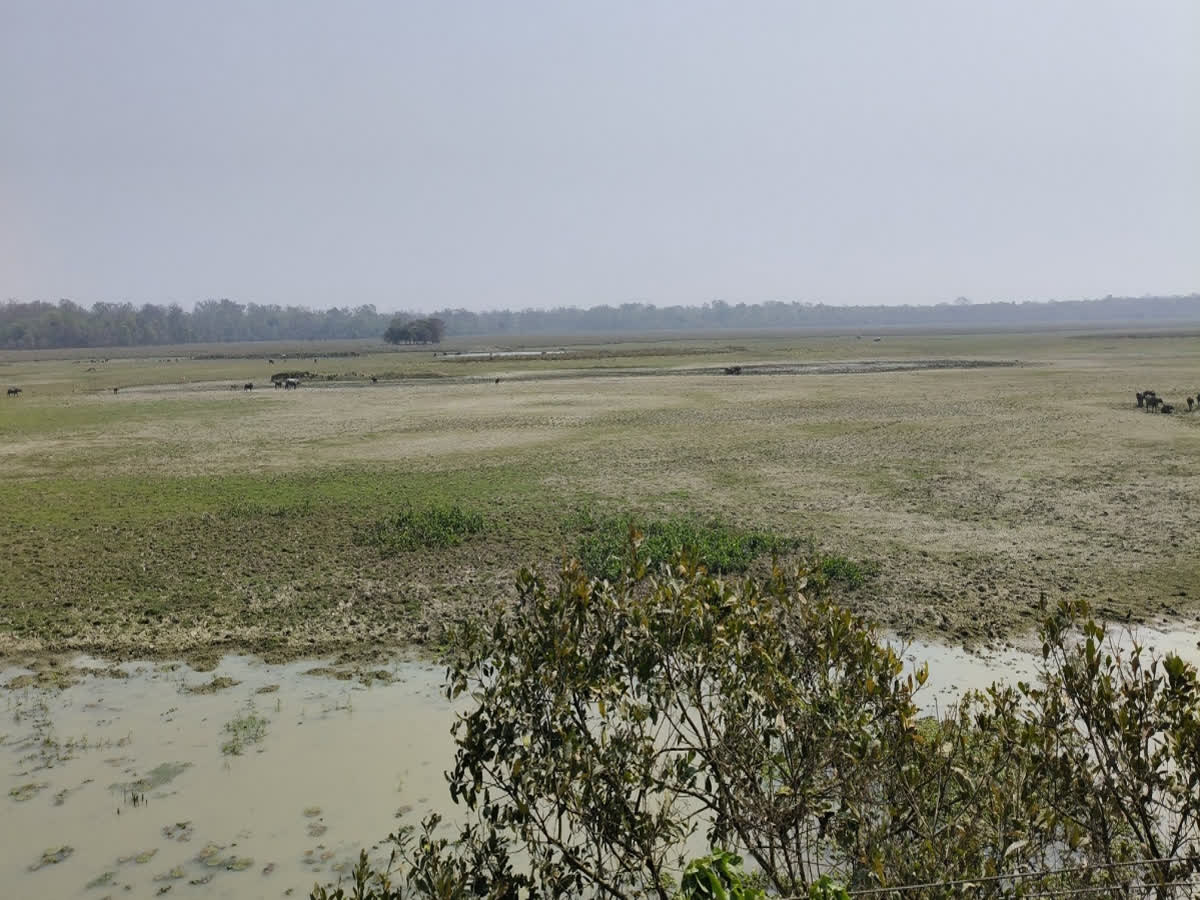
- 15 Mar 2025
In News:
Pobitora Wildlife Sanctuary, located in Assam, is renowned for its high density of the Great Indian One-Horned Rhinoceros and diverse biodiversity. The sanctuary, covering 38.85 km², is facing a growing concern as one of its major wetlands, TamulidobaBeel, is drying up. This situation underscores the urgent need for habitat management to protect the sanctuary's wildlife.
About Pobitora Wildlife Sanctuary:
- Location: Located within 30 km of Guwahati, Assam, it was established in 1998 and spans 48.81 km².
- Fauna: Famous for its rhino population, the sanctuary also houses leopards, wild boars, barking deer, wild buffaloes, and over 2,000 migratory birds.
- Flora: The sanctuary is dominated by wet savannah and marshland, though the invasive water hyacinth is a significant problem, especially for waterfowl.
TamulidobaBeel: A Crucial Wetland
- Role: A key water body within the sanctuary, TamulidobaBeel is vital for rhinos, water buffaloes, and migratory birds.
- Drying Concern: Experts and locals have observed the early drying up of the Beel, a trend that has worsened over the past few years. Migratory birds have already abandoned the wetland earlier than expected, signaling a broader ecological imbalance.
Factors Contributing to Drying of the Wetland:
- Siltation: The deposition of silt has significantly reduced water retention in the Beel.
- Climate Change: Predictions of a hotter weather season (March-May 2025) by the India Meteorological Department suggest further strain on the sanctuary's water resources, affecting biodiversity.
Ecological Implications:
- Rhino Habitat Impact: About 20-25 rhinos are regularly found near TamulidobaBeel. The drying of this wetland increases water scarcity in their core habitat, risking human-animal conflicts as rhinos may stray outside the sanctuary.
- Bird Migration: The Beel also serves as a migratory bird hub, particularly in winter. Early drying may disrupt migration patterns, affecting bird populations.
Government Response and Measures:
- Desilting Efforts: The Forest Department has taken proactive measures, including desilting the Beel to restore water levels and maintain its ecological functions.
- Expert Consultations: Collaborations with institutions like IIT Guwahati are underway to assess and manage the wetland restoration scientifically.
- Long-term Plans: Restoration efforts are focused on improving water retention and managing silt deposition, alongside broader habitat management initiatives.
Expert Recommendations:
- Experts emphasized the critical need for scientific habitat management and stressed the importance of restoring wetlands to ensure the sanctuary's long-term ecological balance.
- The government must focus on sustainable habitat conservation and water management strategies to protect species, especially the rhinos.
PM-YUVA 3.0: Mentoring Young Authors Scheme (2025)
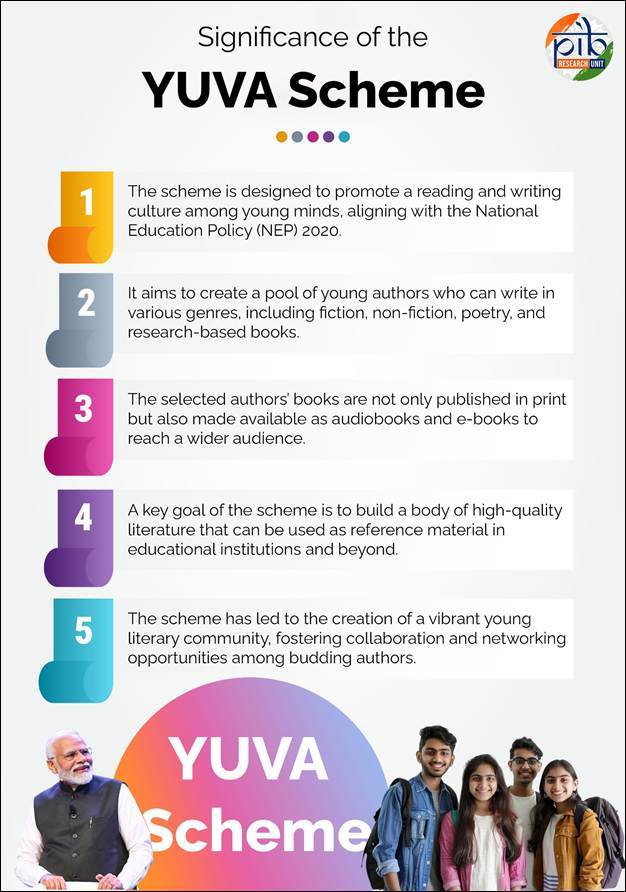
- 15 Mar 2025
In News:
Recently, the Ministry of Education, Department of Higher Education, launched the third edition of the Prime Minister’s Scheme for Mentoring Young Authors (PM-YUVA 3.0). The scheme is a part of India’s broader efforts to cultivate literary talent among youth and promote a vibrant reading and writing culture.
About PM-YUVA Scheme:
- Launched by: Ministry of Education, Government of India
- Implementing Agency: National Book Trust (NBT), India
- Target Group: Young authors below 30 years of age
- Launch Date: March 11, 2025
- Application Window: March 11 to April 10, 2025, via MyGov portal
- Number of Authors Selected: 50
- Eligibility: Applicants of PM-YUVA 1.0 and 2.0 are not eligible
Objectives:
- To mentor young writers and encourage storytelling in Indian languages and English
- To promote a book culture, literacy, and intellectual engagement among youth
- To reflect Indian heritage, knowledge systems, and contemporary progress through literature
Themes for PM-YUVA 3.0:
- Contribution of Indian Diaspora in Nation Building
- Indian Knowledge System (IKS)
- Makers of Modern India (1950–2025)
Mentorship and Publishing:
- Selected authors will undergo training from June 30 to December 30, 2025, under the guidance of eminent mentors
- Books authored during the programme will be published by NBT and translated into Indian languages to promote Ek Bharat Shreshtha Bharat
- Authors will participate in literary festivals and gain exposure to the publishing world
Financial Support and Recognition:
- Scholarship: ?50,000 per month for 6 months (Total ?3 lakh per author)
- Royalty: 10% on successful publication of books
- Platform: Authors will receive national-level exposure for promoting their books and themes
Background:
- PM-YUVA 1.0 (2021): Focused on India’s freedom struggle and unsung heroes
- PM-YUVA 2.0 (2022): Highlighted democracy and constitutional values
- PM-YUVA 3.0 (2025): Explores diaspora, knowledge systems, and nation-building post-independence
Significanc:
- Aligns with NEP 2020 goals of holistic development and youth empowerment
- Encourages intellectual and cultural contributions by the youth
- Promotes awareness of India’s diaspora and indigenous knowledge systems
Raisina Dialogue 2025
- 15 Mar 2025
In News:
The 10th edition of the Raisina Dialogue, India’s premier conference on geopolitics and geo-economics, is scheduled to be held in New Delhi from March 17–19, 2025.
About Raisina Dialogue:
- Launched: 2016
- Organisers: Observer Research Foundation (ORF) in collaboration with the Ministry of External Affairs, Government of India
- Format: Multi-stakeholder, cross-sectoral conference bringing together global leaders in politics, business, media, academia, and civil society
- Modelled On: Munich Security Conference (Germany) and Shangri-La Dialogue (Singapore)
- Annual Venue: New Delhi
- 2025 Theme: Kalachakra: People. Peace. Planet.
Significance for India and the World:
- Provides a platform for dialogue on global strategic and security issues
- Enhances India’s image as a thought leader in international diplomacy
- Fosters multilateral cooperation on contemporary global challenges such as conflict resolution, climate change, technological disruption, and global governance
- Reflects India’s growing role as a bridge between the Global North and Global South
World Air Quality Report 2024
- 15 Mar 2025
In News:
India remains among the world’s most polluted countries despite slight improvements in air quality.
Published by: IQAir (Swiss Air Quality Technology Firm)
Key Findings:
- India’s Global Rank: 5th most polluted country in 2024 (improved from 3rd in 2023).
- Average PM2.5 Level (India): 50.6 µg/m³ in 2024 — 10 times higher than the WHO guideline of 5 µg/m³.
- Top Polluted Cities:
- Byrnihat (Assam-Meghalaya border) — most polluted city globally with PM2.5 at 128.2 µg/m³.
- Delhi — most polluted capital city globally with PM2.5 at 91.6 µg/m³.
- 13 of the world’s 20 most polluted cities are in India, including Mullanpur, Faridabad, Gurugram, Bhiwadi, Noida, and Ganganagar.
- Northern India: Faces severe pollution due to crop stubble burning (contributes ~60% of PM2.5 levels).
- Global Air Quality: 91% of countries exceeded WHO PM2.5 safe limits; only 12 countries met the recommended levels.
Major Sources of PM2.5 Pollution:
- Vehicular emissions
- Industrial discharges
- Biomass burning (e.g., firewood, crop residue)
Health & Environmental Impact:
- Health: Linked to respiratory and cardiovascular diseases, cancers; reduces life expectancy by ~5.2 years in India.
- Annual Death Toll: ~1.5 million deaths in India linked to PM2.5 exposure (2009–2019, Lancet Study).
- WHO: 99% of the world’s population breathes polluted air.
India’s Measures to Combat Air Pollution:
Initiative Description
NCAP (2019) - Aims to reduce PM levels by 20–30% in non-attainment cities by
2026. Focuses on monitoring, emissions control, public awareness.
BS-VI Emission Standards - Implemented in 2020 for vehicles to reduce vehicular pollution.
FAME Scheme - Promotes electric and hybrid vehicles to cut down transport-related emissions.
PM Ujjwala Yojana - Provides LPG connections to reduce indoor air pollution from biomass.
GRIHA - Encourages eco-friendly construction practices.
GRAP - Emergency action plan in Delhi-NCR during high pollution episodes.
Commission for Air Quality Management - Coordinates air quality actions across NCR and
nearby areas.
Public Transport & Regulation - Expanding metro/bus networks, penalising high-emission vehicles.
Way Forward:
- Strengthen enforcement of emission norms for vehicles and industries.
- Promote LPG usage over biomass for cooking, especially among rural poor.
- Increase public transport options and incentivise clean technologies.
- Raise awareness and improve inter-state coordination on stubble burning.
Uniyalakeralensis
- 15 Mar 2025
In News:
Researchers have confirmed the discovery of a new flowering plant species named Uniyalakeralensis (family: Asteraceae) in the Agasthyamala Biosphere Reserve (ABR), located in the southern Western Ghats of Kerala. Endemic to southwest India, the species is named in honour of the state of Kerala.
Key Features:
- Plant Type: Dense shrub with light purple flowers, growing 1–3 metres tall.
- Distinctive Traits: Larger leaves, longer petioles (leaf stalks), and fewer lateral veins compared to related species like U. comorinensis and U. salviifolia.
- Flowering & Fruiting Period: August to April.
- Habitat: Open areas on western mountain slopes of ABR, at elevations between 700–1,400 metres.
- Distribution: Around 5,000 individuals across four subpopulations, covering an estimated area of 250 km².
- IUCN Status (2024): Data Deficient (DD) due to limited information on long-term population trends.
The plant was first collected in 1998 and initially misidentified as Vernonia multibracteata. Later taxonomic revisions led to the recognition of Uniyala as a separate genus, named after botanist B.P. Uniyal, with this species formally described as new.
About Agasthyamala Biosphere Reserve (ABR):
- Location: Spans parts of Kerala and Tamil Nadu in the southern Western Ghats.
- UNESCO Status: Recognized under the Man and the Biosphere (MAB) Programme in 2016.
- Biodiversity Highlights: Home to over 2,254 higher plant species, including 405 endemics; key fauna includesNilgiriTahr, Lion-tailed Macaque, Bengal Tiger, and Indian Elephant.
- Indigenous Communities: Inhabited by the Kani tribes in both states.
NECTAR to Lead Agri-Tech Revolution
- 14 Mar 2025
In News:
In a major policy and scientific initiative, the Government of India is transforming the Northeast into the country’s next saffron cultivation hub, following the successful model of Jammu & Kashmir’s Pampore. The development is being led by the North East Centre for Technology Application and Reach (NECTAR), an autonomous body under the Department of Science and Technology (DST).
Mission Saffron and the Saffron Bowl Project
Originally launched in 2010–11 for Jammu and Kashmir, Mission Saffron was expanded to the Northeast in 2021 through the Saffron Bowl Project. The initiative now promotes saffron cultivation in Sikkim, Arunachal Pradesh, and Meghalaya, with further expansion planned for Nagaland and Manipur.
Saffron, derived from the stigmas of Crocus sativus, requires high-altitude (approx. 2000m), well-drained loamy or calcareous soils, and a dry to temperate climate. These agro-climatic conditions are present in parts of the Northeast, making it a viable region for saffron farming.
NECTAR’s Role in Agri-Tech and Regional Development
Established in 2014, NECTAR is driving technology-based interventions in agriculture, infrastructure, and economic development across the Northeastern states. The foundation stone for its permanent campus in Shillong was laid in March 2025 by Union Minister Dr. Jitendra Singh, marking a significant boost for scientific infrastructure in the region.
NECTAR's notable initiatives include:
- Saffron cultivation under the Saffron Bowl Project.
- Use of drone technology for land mapping under the Swamitva Yojana.
- Promotion of bamboo-based industries and honey production.
- Supporting indigenous technologies for sustainable rural development.
The Shillong campus is envisioned as a Centre of Excellence for advanced technological demonstrations and skill development, helping bridge last-mile gaps in technology adoption.
Significance for India’s Development
The Northeast is integral to India's aim of becoming a developed nation by 2047. Improvements in connectivity—roads, railways, and air links—have laid the groundwork for economic and scientific transformation in the region. The government sees the Northeast as a key growth frontier to unlock the country’s untapped potential.
Supersolid Light
- 14 Mar 2025
In News:
In a groundbreaking achievement, Italian scientists have successfully created the world’s first ‘supersolid’ made from light, marking a new milestone in quantum physics. This discovery demonstrates that light, traditionally understood as pure energy, can be manipulated into a rare state of matter that combines the order of a solid with the frictionless flow of a superfluid.
What Is a Supersolid?
A supersolid is an exotic quantum phase of matter exhibiting dual characteristics:
- Solid-like structure: Maintains a periodic, lattice-like spatial arrangement.
- Liquid-like behavior: Flows without internal resistance (zero viscosity), like a superfluid.
Previously, supersolidity was observed in Bose-Einstein condensates (BECs)—ultracold atomic systems cooled near absolute zero (–273.15°C), where quantum effects dominate.
How was Supersolid Light created?
Researchers used semiconductor nanostructures (gallium arsenide with micro-ridges) to create polaritons—hybrid quasiparticles formed by coupling photons (light) with excitons (matter).
- When cooled and stimulated with a laser, these polaritons condensed into a coherent quantum fluid arranged in a regular pattern, exhibiting both superfluid and solid-like properties.
Key Features of Supersolid Light:
- Quantum Coherence: Particles move in a synchronized, wave-like manner due to shared quantum states.
- Frictionless Flow: Can move through obstacles without energy loss.
- Crystalline Order: Particles maintain a rigid spatial configuration.
- Symmetry Breaking: Demonstrates both spatial order and dynamic fluidity.
Significance and Applications:
- Quantum Computing: Enhances qubit stability and coherence, essential for error-free quantum operations.
- Photonics and Optical Devices: Enables development of light-based circuits with high efficiency.
- Energy Technologies: Potential applications in superconductors and frictionless systems.
- Fundamental Research: Offers insights into non-equilibrium quantum systems and phase transitions.
Why it matters for Science & Technology?
This marks the first time light has been shown to form a supersolid, expanding the boundaries of material science. It provides a new experimental platform for studying quantum behavior in light-matter systems, bridging the gap between theoretical physics and practical innovation.
PM-ABHIM
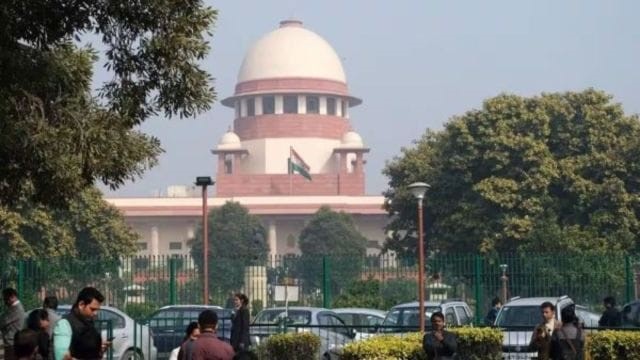
- 14 Mar 2025
In News:
The Pradhan Mantri Ayushman Bharat Health Infrastructure Mission (PM-ABHIM) is a major Centrally Sponsored Scheme launched in 2021 to strengthen public health systems across India, with a focus on pandemic preparedness and infrastructure development at all levels of healthcare.
In March 2025, the Delhi government agreed to sign a Memorandum of Understanding (MoU) with the Ministry of Health and Family Welfare to implement PM-ABHIM, marking a policy shift after earlier resistance. Under the agreement:
- 553 existing Mohalla Clinics will be upgraded to Urban Ayushman Arogya Mandirs (U-AAMs).
- 413 new U-AAMs will be established.
- A total of 1,139 Urban AAMs will cater to Delhi’s primary healthcare needs.
Key Features of PM-ABHIM (2021–26):
- Total outlay: ?64,180 crore.
- Goal: Strengthen health infrastructure for effective response to future pandemics and disasters, and improve public health systems at primary, secondary, and tertiary levels.
- Scope: Combines Central Sector and Centrally Sponsored Scheme (CSS) components.
Major Components:
- 17,788 Sub-Centres asAyushman Arogya Mandirs (AAMs)in rural areas.
- 11,024 Urban AAMs, focusing onslum areas.
- 3,382 Block Public Health Units (BPHUs).
- 730 Integrated Public Health Labs (IPHLs)—one per district.
- 602 Critical Care Hospital Blocks (CCBs)in districts with populations above 5 lakh.
Governance & Implementation:
- Health being a State subject, implementation is carried out by State/UT governments.
- The MoHFW provides technical and financial assistance.
- Awareness and IEC (Information, Education, Communication) activities are integrated with other National Health Mission programs.
Nagorno-Karabakh Conflict
- 14 Mar 2025
In News:
In a landmark development, Armenia and Azerbaijan have finalized a peace agreement in 2024, aiming to end decades of hostilities over the Nagorno-Karabakh region—a flashpoint in the South Caucasus with deep-rooted ethnic and geopolitical tensions.
About Nagorno-Karabakh:
- A landlocked, mountainous region in the South Caucasus, referred to as Artsakh by Armenians.
- Located within internationally recognized Azerbaijani territory, but historically inhabited by ethnic Armenians.
- Features diverse geography: steppe lowlands, dense forests, and alpine meadows.
Historical Background:
- Soviet Era (1920s): USSR established Nagorno-Karabakh as an autonomous region within Muslim-majority Azerbaijan, despite its Armenian Christian majority.
- Post-USSR Collapse (1991): Karabakh declared independence; First Nagorno-Karabakh War (1988–1994) broke out.
- Result: Armenian forces took control of Nagorno-Karabakh and surrounding Azerbaijani districts.
- 2017: A referendum in Karabakh changed the government to a fully presidential system and renamed the region from Nagorno-Karabakh Republic to Republic of Artsakh.
- Second War (2020): Azerbaijan regained significant territory; thousands of soldiers were killed on both sides.
- 2023 Azerbaijani Offensive: In a swift one-day operation, Azerbaijan reasserted full control over the region.
- The Republic of Artsakh (unrecognized government) was officially dissolved in 2024.
- Over 1 lakh ethnic Armenians fled to Armenia.
India’s Position:
- India maintains a neutral stance, supports a peaceful diplomatic resolution under the aegis of the OSCE Minsk Group.
- Both Armenia and Azerbaijan are part of the International North-South Transport Corridor (INSTC), critical for India’s strategic connectivity and trade with Central Asia and Russia.
Mission Amrit Sarovar
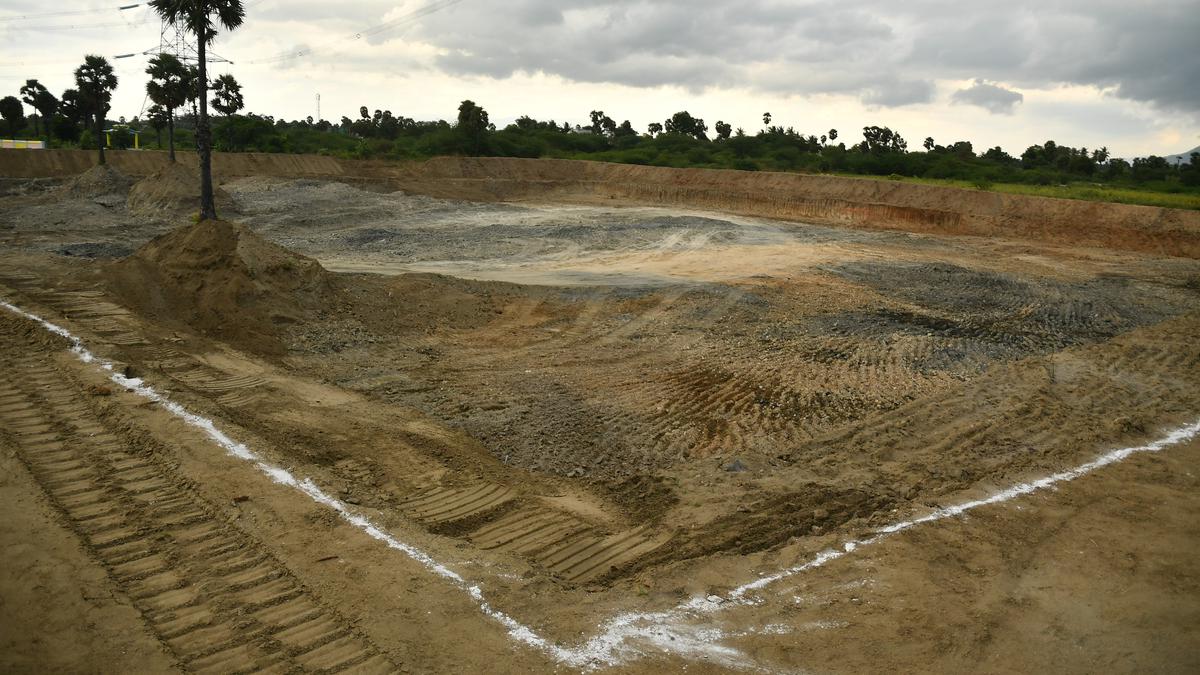
- 14 Mar 2025
In News:
Launched in April 2022, Mission Amrit Sarovar is a Government of India initiative aimed at addressing water scarcity, particularly in rural areas, by constructing or rejuvenating 75 water bodies in every district, targeting over 50,000 ponds nationwide. As of October 2024, over 68,000 ponds have been completed.
Key Features:
- Minimum Pond Size: 1 acre with a water holding capacity of ~10,000 cubic metres.
- Community Participation: Sites approved by special Gram Sabha, with a Panchayat Pratinidhi supervising development.
- Multi-Ministerial Collaboration: Involves the Ministries of Rural Development, Jal Shakti, Panchayati Raj, Culture, Environment, and others.
- Technical Support: BISAG-N (Bhaskaracharya National Institute for Space Applications and Geo-informatics) is the technical partner, offering a dedicated portal and mobile app for tracking progress.
- Whole-of-Government Approach: Ensures coordinated implementation across ministries.
Railways' Involvement (2025 Initiative):
- Under Phase II of the mission, Indian Railways is tasked with:
- Desilting existing water bodies or constructing new ponds near railway tracks.
- Using excavated soil for railway embankments, where suitable.
- Coordinating with district authorities and the Ministry of Rural Development to identify appropriate sites.
- The goal is to complete a significant number of ponds by August 15, 2025.
- Promotes climate resilience, ecological balance, and sustainable water resource management.
Ponzi Schemes in India
- 13 Mar 2025
In News:
Probe agency seizes Business Jet at Hyderabad Airport in "Ponzi Scam" Case.
What is a Ponzi Scheme?
A Ponzi scheme is a fraudulent investment operation where returns to earlier investors are paid using the capital of new investors, not from legitimate business profits. It creates an illusion of high returns with low or no risk.
- Origin: Named after Charles Ponzi, who orchestrated such a scam in the USA in 1920.
- Mechanism:
- Relies on a continuous influx of new investors.
- Uses word-of-mouth, high-return promises, and deceptive marketing.
- Collapses when new investments stop, leading to default on payouts.
Ponzi vs Pyramid Scheme
- Ponzi Scheme: Pays earlier investors from newer investors' money, without involving them in recruitment.
- Pyramid Scheme: Rewards early participants for recruiting others, creating a hierarchical structure that collapses as recruitment slows.
Recent Developments
- ED Action (2024): The Enforcement Directorate (ED) seized a business jet at Hyderabad airport in connection with a ?850 crore Ponzi scam involving a Hyderabad-based company.
- Odisha Case: The STA Crypto scheme operated as a Ponzi-cum-multi-level marketing (MLM) scam, luring people with promises of crypto earnings in return for recruiting more members.
Legal Safeguards Against Ponzi Schemes in India
- Prize Chits and Money Circulation (Banning) Act, 1978
- Bans prize chits and money circulation schemes.
- Enforced by State Governments.
- Banning of Unregulated Deposit Schemes Act, 2019
- Specifically prohibits unregulated deposit-taking schemes including Ponzi models.
- Provides a unified framework to protect depositors.
- Prevention of Money Laundering Act (PMLA), 2002: Used by ED to trace and seize proceeds of crime from Ponzi operators.
Red Flags of Ponzi Schemes
- Unusually high and consistent returns
- No clear investment strategy or revenue model
- Over-emphasis on recruitment
- Difficulty in withdrawing funds
- Lack of regulatory approval or transparency
Consequences of Participation
- Investors: Risk of complete loss of capital.
- Promoters: Face legal action, asset seizure, and imprisonment.
- General Public: Erosion of trust in financial systems.
Preventive Measures for Individuals
- Verify if the scheme is registered with SEBI, RBI, or other regulators.
- Be cautious of too-good-to-be-true returns.
- Conduct due diligence and consult financial advisors.
- Report suspicious schemes to authorities like SEBI or EOW.
Madhav National Park
- 13 Mar 2025
In News:
Madhav National Park in Madhya Pradesh has been declared India’s 58th Tiger Reserve and the 9th in Madhya Pradesh, strengthening the state's status as a leader in tiger conservation.
About Madhav National Park
- Location: Shivpuri district, Madhya Pradesh; part of the Chambal region and the Upper Vindhyan Hills on the northern fringe of the Central Highlands.
- Established: As Madhya Bharat National Park in 1955; renamed Madhav National Park in 1959.
- National Park Status: Since 1958.
- Area: Approx. 354 sq km (expanded from 165 sq km).
- Historical Significance: Former hunting ground of Mughal emperors and Maharaja of Gwalior; named after Maharaja Madhav Rao Scindia.
Ecological Profile
- Vegetation:
- Northern Tropical Dry Deciduous Forests
- Dry Thorn Forests typical of North-Western Madhya Pradesh
- Fauna:
- Large Mammals: Tigers, leopards, wolves, jackals, foxes, wild dogs
- Antelopes: Nilgai, Chinkara, Chowsinga
- Deer Species: Chital, Sambar, Barking Deer
- Others: Crocodiles, porcupines, wild pigs, pythons
- Aquatic Ecosystems:
- Two major lakes: Sakhya Sagar and Madhav Sagar support aquatic biodiversity
Tiger Conservation Highlights
- Declared a Tiger Reserve: In 2024, becoming India’s 58th and Madhya Pradesh’s 9th.
- Tiger Reintroduction: Began in 2023; currently home to five tigers, including two cubs.
- Core and Buffer Zones:
- Core Zone: Strictly protected, no human activity
- Buffer Zone: Allows limited, regulated human use to support coexistence
Governance and Protection Framework
- Tiger Reserve Status:
- Notified under Section 38V of the Wildlife Protection Act, 1972
- Falls under Project Tiger (1973), monitored by the National Tiger Conservation Authority (NTCA)
- Approval Process:
- State Government Proposal
- NTCA Evaluation
- MoEFCC Final Notification
- Monitoring System: M-STrIPES (Monitoring System for Tigers – Intensive Protection and Ecological Status) used for surveillance and conservation.
Brahmastra Hypersonic Missile
- 13 Mar 2025
In News:
Indian scientists, under the Defence Research and Development Organisation (DRDO), have successfully developed and tested a hypersonic missile named Brahmastra, officially called the Long Range Anti-Ship Missile (LRAShM). It represents a major milestone in indigenous defence technology.
Key Features of Brahmastra (LRAShM)
- Type: Hypersonic glide missile
- Developer: DRDO
- Speed: Mach 10 (≈12,144 km/h) — 10 times the speed of sound
- Range: 1,500 km
- Flight Time to Target: Can destroy enemy warships within 7–8 minutes of launch
- Launch Platforms: Compatible with both land and naval platforms
- Technology:
- Scramjet propulsion and glide vehicle technology
- Advanced heat-resistant materials to withstand extreme thermal conditions
- Radar evasion and trajectory maneuverability, making interception extremely difficult
Strategic Significance
- Naval Superiority: Enhances India’s maritime strike capabilities, especially in the Indian Ocean Region (IOR).
- Counter to China: Outperforms China’s DF-17 missile, which has a shorter range (1,000 km).
- Quick Response: For instance, a warship near Pakistan’s Karachi port could be neutralized within 4–5 minutes from India’s western coastline.
- Technological Benchmark: Establishes India’s lead in scramjet and hypersonic glide vehicle technology.
Comparative Edge Over Global Counterparts
- China's DF-17: Also hypersonic (Mach 10) but limited to a 1,000 km range.
- U.S. Programs: Still under testing; India’s successful deployment marks it as a front-runner in this emerging domain.
- Strategic Camouflage: Experts speculate India may have publicly understated the missile's actual capabilities for security reasons.
U.S. Strategic Bitcoin Reserve
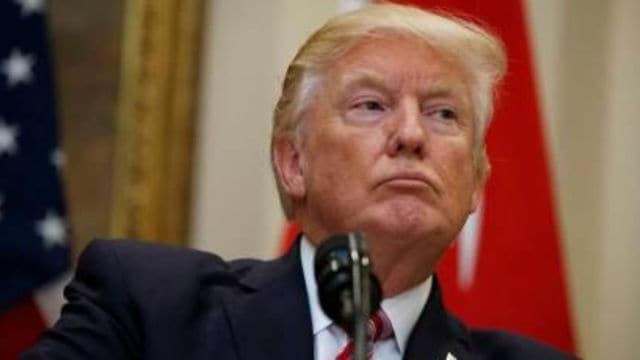
- 13 Mar 2025
In News:
In March 2025, U.S. President Donald Trump signed an executive order establishing a Strategic Bitcoin Reserve, positioning the United States as a frontrunner in digital asset storage and long-term crypto strategy.
What is the Strategic Bitcoin Reserve?
- A government-backed stockpile of Bitcoin and select other cryptocurrencies, managed by the U.S. Department of Treasury and Department of Commerce.
- Intended to serve as a digital financial reserve, akin to the U.S. Strategic Petroleum Reserve or gold reserves (e.g., Fort Knox).
- Aims to enhance U.S. leadership in digital currency markets, provide a hedge against inflation, and integrate digital assets into national reserve strategy.
Key Features:
Aspect Details
Establishment By executive order of President Trump, March 2025
Management U.S. Treasury & Commerce Departments
Funding Source Bitcoin and other digital assets seized in criminal and civil forfeiture
proceedings
Assets Held Bitcoin (BTC), Ethereum (ETH), XRP, Solana (SOL), Cardano (ADA)
Ownership As of 2025, U.S. government reportedly holds 200,000 BTC ($18.1 billion)
Policy No short-term sales; assets to be held long-term
Cost to Taxpayers Budget-neutral – funded through seized assets only
Audit Directive Full accounting of federal digital asset holdings mandated
Strategic Rationale:
- Limited Supply Advantage: Bitcoin’s capped supply of 21 million gives it value retention properties similar to gold.
- Inflation Hedge: Cryptocurrencies offer resistance to fiat currency inflation.
- Diversification: Adds a new asset class to U.S. strategic reserves.
- Legitimacy Boost: Government backing may encourage broader adoption of digital currencies.
Concerns & Criticisms:
- Volatility: High market risk; value of crypto assets can fluctuate rapidly.
- Speculation Risk: Critics argue buying crypto at peak prices (BTC ~$109,000) may backfire.
- Ideological Contradiction: Centralized crypto reserve contradicts the decentralized ethos of cryptocurrencies.
- Market Manipulation Potential: Large-scale government holdings could distort free market dynamics.
- Public Benefit Questioned: Critics argue early investors may benefit more than the general public.
Global Context:
- El Salvador: First nation to adopt Bitcoin as legal tender and build a crypto reserve.
- Gold Reserves Trend: Countries like India, China, Turkey, Poland have increased gold holdings—crypto reserves may reflect a similar diversification strategy.
Mukhyamantri Majhi LadkiBahin Yojana
- 13 Mar 2025
In News:
Ahead of International Women's Day 2025, the Maharashtra government has promised to deposit the 8th and 9th installment of Mukhyamantri Majhi LadkiBahin Yojana
Objective:
A flagship women-centric welfare scheme launched by the Maharashtra government in 2024 to provide monthly financial assistance to economically disadvantaged women and promote their socio-economic empowerment.
Key Features:
- Target Group: Economically weaker women aged 21 to 65 years, who are permanent residents of Maharashtra.
- Eligibility Criteria:
- Annual family income must not exceed ?2.5 lakh.
- No family member should be an income taxpayer.
- Financial Assistance: ?1,500 per month via Direct Benefit Transfer (DBT).
- Scheme Performance (as of Dec 2024):
- Total disbursement: ?17,500 crore
- Total beneficiaries: 2.38 crore women
Recent Update (March 2025):
- Installment Release: On the occasion of International Women’s Day 2025, the government released the 8th and 9th installments (?3,000 total) to 2.52 crore women for the months of February and March.
- Delay & Clarification: Due to technical delays in February’s payment, both months' amounts were disbursed together in March 2025.
Policy Outlook:
- Proposed Enhancement: During the 2024 election campaign, the government promised to raise the monthly benefit from ?1,500 to ?2,100.
- Current Status: No official decision has been made regarding the increase as of the 2025 budget session.
Woolly Mice

- 12 Mar 2025
In News:
Scientists at Colossal Biosciences, a US-based biotechnology company, have genetically engineered mice with mammoth-like traits, dubbed “woolly mice”, as part of a broader project aiming to revive the extinct woolly mammoth.
What are Woolly Mice?
Woolly mice are genetically modified laboratory mice that express specific traits observed in woolly mammoths, such as thick, wavy fur and cold adaptation features. These traits were introduced to validate the feasibility of editing multiple genes for the potential de-extinction of the woolly mammoth.
How Were Woolly Mice Created?
- Methodology:
- Scientists compared ancient DNA of woolly mammoths with modern Asian elephants (their closest living relatives) to identify unique cold-adaptation genetic variants.
- Selected 10 mammoth-associated gene variants related to hair length, thickness, color, and fat metabolism were mapped to their equivalents in lab mice.
- Using CRISPR gene-editing technology, seven key genes were edited across eight changes in mouse embryos.
- Key Gene Edits:
- FGF5: Regulated hair cycle, producing hair three times longer than normal.
- MC1R: Altered coat color to golden, similar to mammoths.
- FABP2: Modified lipid metabolism for potential cold resistance.
- Additional genes affected hair texture, follicle structure, and whisker curling.
Significance of the Experiment
- Proof of Concept: Demonstrates that mammoth-like traits can be recreated in living organisms through targeted gene editing.
- Model for Cold Adaptation Studies: Offers insights into thermoregulation and climate resilience, useful for biodiversity research.
- Potential for Conservation: Highlights the emerging role of gene editing in preventing extinctions and enhancing species’ adaptability.
Scientific and Ethical Concerns
- Some experts argue that the research lacks conclusive evidence that the mice are truly cold-adapted.
- Critics note that while physical traits were achieved, this does not equate to reviving a mammoth, but rather mimicking select features in a different organism.
- There are broader debates on whether such de-extinction efforts are beneficial or divert resources from conserving existing endangered species.
ParvatmalaPariyojana

- 12 Mar 2025
In News:
The ParvatmalaPariyojana, launched in the Union Budget 2022–23, is a Central Government initiative aimed at developing ropeway infrastructure across the country, especially in hilly, forested, and difficult terrains. It aims to provide safe, sustainable, and efficient transport alternatives to reduce congestion, improve tourism, and enhance last-mile connectivity.
Key Features of the Programme
- Implementing Agency:National Highways Logistics Management Limited (NHLML), a 100% SPV of NHAI, under the Ministry of Road Transport & Highways (MoRTH).
- Funding Model:
- Projects are implemented under the Public-Private Partnership (PPP) model, specifically Design-Build-Finance-Operate-Transfer (DBFOT) mode.
- The Government of India contributes ~60% of the total cost.
- Target:Development of over 250 ropeway projects covering 1,200+ km, with an estimated investment of ?1.25 lakh crore.
- Budget Allocation:?300 crore was allocated in FY 2024–25, with ?200 crore utilized by December 2024.
Recent Cabinet Approvals in Uttarakhand (March 2025)
Two major ropeway projects under the scheme received Union Cabinet approval:
- Govindghat to Hemkund Sahib Ji Ropeway
- Length: 12.4 km
- Technology:
- Monocable Detachable Gondola (MDG): Govindghat to Ghangaria (10.55 km)
- Tri-cable Detachable Gondola (3S): Ghangaria to Hemkund Sahib (1.85 km)
- Capacity: 1,100 passengers/hour/direction (PPHPD); up to 11,000 passengers/day
- Elevation: Hemkund Sahib is located at 15,000 ft in Chamoli district
- Pilgrim Footfall: Approx. 1.5–2 lakh annually
- Sonprayag to Kedarnath Ropeway
- Length: 12.9 km
- Technology: Tri-cable Detachable Gondola (3S)
- Capacity: 1,800 PPHPD; up to 18,000 passengers/day
- Elevation: Kedarnath is at 3,583 m (11,968 ft) in Rudraprayag district
- Pilgrim Footfall: Around 20 lakh annually
- Total Project Cost: Over ?6,811 crore
Advantages of Ropeways
- Lower land acquisition requirements
- Suitable for eco-sensitive and congested areas
- More cost-effective than roads in difficult terrains despite higher construction cost per km
- Boosts religious and adventure tourism, generating local employment and economic development
Other Ropeway Projects (2024–25 Update)
- Under Construction:Varanasi Ropeway (Uttar Pradesh): 3.85 km
- Awarded Projects:Bijli Mahadev (HP), Dhosi Hill (Haryana), Mahakaleshwar Temple (MP) – Total 4.93 km
PashuAushadhi Initiative
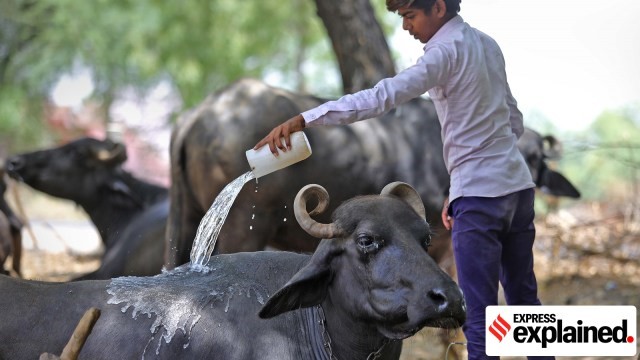
- 12 Mar 2025
In News:
The Government of India has launched the PashuAushadhi initiative to establish dedicated stores across the country offering affordable, high-quality generic veterinary medicines. This move aims to reduce the out-of-pocket expenditure of farmers and enhance animal health and productivity, especially in the livestock and dairy sectors.
Key Features:
- Modelled on PMBJK: Inspired by the success of the Pradhan Mantri BharatiyaJanaushadhiKendras (PMBJK) that provide generic human medicines, the PashuAushadhiKendras will serve the same purpose for animals.
- Affordable Veterinary Drugs: These Kendras will provide non-branded (generic) veterinary medicines at significantly lower prices.
- Ethnoveterinary Medicines: Alongside allopathic drugs, they will also stock traditional remedies based on indigenous knowledge, compiled by the National Dairy Development Board (NDDB). These include formulations for fever, diarrhoea, indigestion, mastitis, and more.
Implementation Framework
- The initiative is part of the revised Livestock Health and Disease Control Programme (LHDCP), approved by the Union Cabinet.
- Run by Co-operative Societies & PM-KisanSamriddhiKendras (PMKSKs).
- An initial budget of ?75 crore has been allocated under the LHDCP for veterinary medicine access and sales incentives.
Livestock Health and Disease Control Programme (LHDCP)
- With an outlay of ?3,880 crore for 2024–25 and 2025–26, the LHDCP focuses on:
- Prophylactic vaccination against major animal diseases (e.g., FMD, Brucellosis, CSF, PPR, Lumpy Skin Disease).
- Disease surveillance and veterinary infrastructure strengthening.
- Capacity building of veterinary services across India.
Need and Significance
- As per the 20th Livestock Census (2019), India has 535.78 million livestock, including over 302 million bovines.
- Livestock productivity is often hampered by preventable diseases.
- Farmers bear significant expenses on veterinary care, highlighting the need for cost-effective treatment options.
Antarctic Circumpolar Current (ACC) Slowing Down
- 12 Mar 2025
In News:
Recent scientific studies have revealed that the Antarctic Circumpolar Current (ACC)—the strongest and most powerful ocean current on Earth—is slowing down due to accelerated melting of Antarctic ice sheets caused by global warming.
What is ACC?
- The ACC flows clockwise around Antarctica and is the only ocean current that connects the Atlantic, Pacific, and Indian Oceans.
- It is five times stronger than the Gulf Stream and over 100 times more powerful than the Amazon River.
- Driven by strong westerly winds, it is the largest wind-driven ocean current and plays a vital role in regulating the Earth’s climate.
Key Functions and Significance
- Climate Regulation: Distributes heat, nutrients, and water across ocean basins.
- Carbon Sink: Aids in oceanic absorption of atmospheric carbon dioxide, mitigating global warming.
- Marine Barrier: Acts as a natural wall preventing invasive species (e.g., bull kelp, mollusks, shrimp) from reaching Antarctica.
- Prevents Warm Water Intrusion: Helps keep warm ocean currents away from the fragile Antarctic ice shelves.
Findings from Recent Research
- A study by the University of Melbourne and NORCE Norwegian Research Centre, published in Environmental Research Letters, warns that the ACC could slow down by 20% by 2050 under high emissions scenarios.
- Researchers used high-resolution ocean and sea ice simulations on Australia’s GADI supercomputer to project these changes.
- The weakening is largely attributed to the freshwater input from melting ice, which alters ocean salinity and disrupts the formation of Antarctic Bottom Water (AABW)—a crucial component of global ocean circulation.
Reasons for ACC Weakening
- Freshwater Dilution: Melting ice reduces salinity, weakening the density-driven AABW circulation.
- Altered Wind Patterns: Climate change may shift westerly wind patterns that drive the ACC.
- Positive Feedback Loop: Reduced sea ice further warms oceans, accelerating ice melt and weakening the current further.
Potential Global Impacts
- Climate Extremes: Disruption in global heat distribution may lead to increased climate variability and extreme weather events.
- Accelerated Global Warming: Slower circulation reduces the ocean’s carbon sequestration capacity.
- Biodiversity Threats: Invasive species could reach Antarctica, disrupting native ecosystems and food chains (e.g., penguins and krill).
- Global Ocean Circulation Impact: AABW weakening may disrupt the thermohaline circulation affecting global ocean systems.
AI Kosha
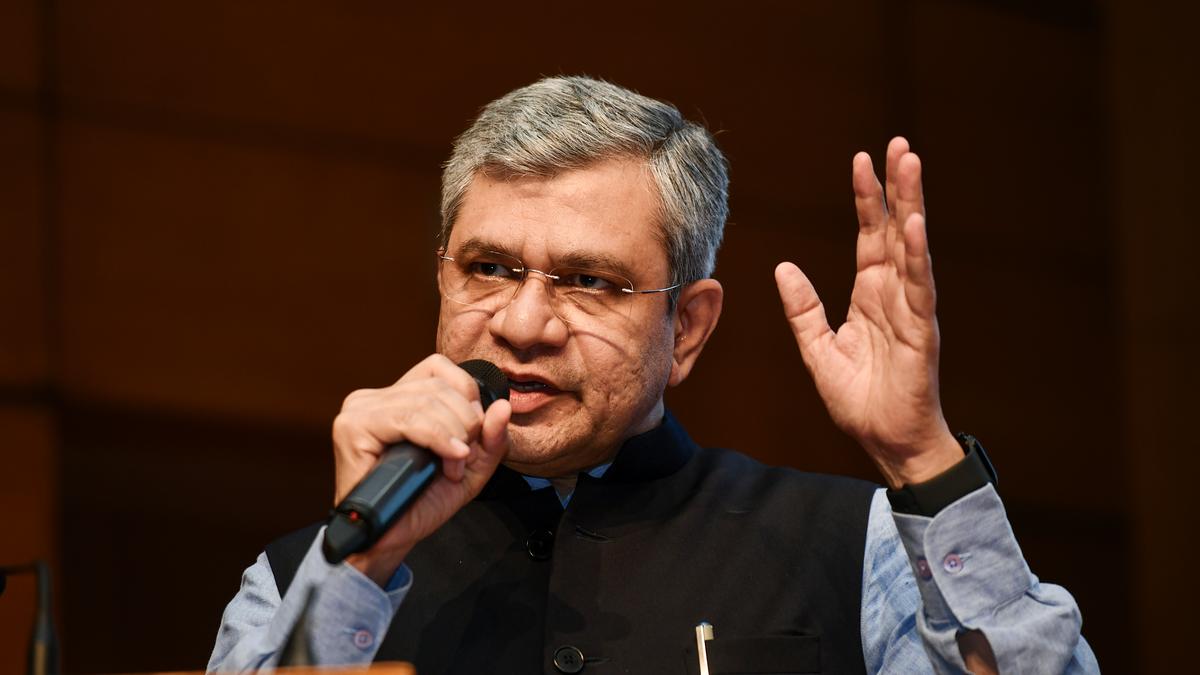
- 12 Mar 2025
In News
The Ministry of Electronics and Information Technology (MeitY) has launched AI Kosha, a secure platform to catalyze Artificial Intelligence (AI) innovation by providing centralized access to high-quality datasets, models, and development tools. This initiative is part of the broader IndiaAI Mission, which has an outlay of ?10,371 crore and aims to democratize AI access and boost research and governance applications.
Key Features and Infrastructure
- Datasets & Models: AI Kosha hosts 316 datasets and over 80 AI models, covering areas such as Indian language translation, health, census, meteorology, pollution, and satellite imagery.
- AI Sandbox Environment: Offers integrated development tools, tutorials, and an IDE for training AI models.
- Security Protocols: Implements encryption, secure API-based access, real-time threat filtering, and tiered permissions for users (researchers, startups, government bodies).
- AI-readiness Scoring: Aids users in selecting relevant and usable datasets.
Compute Capacity Boost
Under the Compute Capacity pillar of the IndiaAI Mission, the government has commissioned 14,000 GPUs (up from 10,000 announced earlier in 2025) to support shared access for startups and academic institutions. This infrastructure is vital for training large AI models, particularly foundational models tailored for Indian needs.
Policy and Data Governance Background
- AI Kosha complements earlier government efforts like data.gov.in, which already hosts 12,000+ public datasets.
- A 2018 committee, led by Infosys co-founder Kris Gopalakrishnan, proposed access to non-personal data from private firms to promote innovation—a proposal that faced resistance from industry stakeholders.
- The platform promotes ethically sourced and consent-based datasets, aligning with responsible AI practices.
Challenges
- Limited Dataset Diversity: Current datasets are mostly government or research-based, limiting private-sector applicability.
- Access Barriers: Strong security protocols, while crucial, may hinder ease of access for some innovators.
- Early Stage Evolution: Wider participation from industry is essential to expand dataset variety and utility.
5th Edition of Lineman Diwas
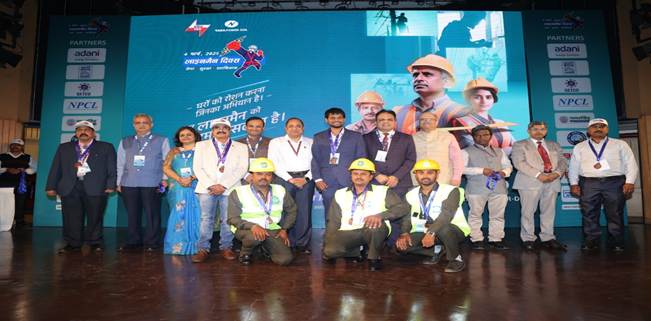
- 11 Mar 2025
In News:
The Central Electricity Authority (CEA), in partnership with Tata Power Delhi Distribution Ltd (Tata Power-DDL), organized the 5th Edition of Lineman Diwas on March 4, 2025, in New Delhi. The event commemorates the invaluable service of linemen and ground maintenance staff—frontline workers vital to ensuring uninterrupted power supply across India.
Key Highlights:
- Theme: Seva, Suraksha, Swabhiman (Service, Safety, Self-respect).
- Over 180 linemen from 45+ state and private utilities attended.
- Recognized 5 linemen and 4 DISCOMs for exemplary safety and service standards.
- Special Anthem on linemen launched by CEA Chairperson Ghanshyam Prasad.
- Safety videos and demonstrations of modern equipment were showcased.
- Participants visited the Distribution Operations & Safety Excellence Center (DOSEC) for exposure to training modules and tools.
The event highlighted the importance of Hotline Maintenance Training, which enables linemen to safely work on live power lines, improving both worker safety and power grid reliability.
About Central Electricity Authority (CEA):
- Statutory Body under the Ministry of Power, Govt. of India.
- Established: Originally under Electricity (Supply) Act, 1948; reconstituted under Electricity Act, 2003.
- Headquarters: New Delhi.
- Functions:
- Advises government on electricity policy, planning, and technical standards.
- Monitors power generation, transmission, and distribution efficiency.
- Promotes safety, training, and regulatory compliance.
- Key Divisions:
- Power Planning & Monitoring
- Grid Operations & Transmission
- Distribution & Regulatory Affairs
- Safety & Training
Japan’s Largest Wildfire in Decades
- 11 Mar 2025
In News:
Japan is currently battling its most extensive wildfire in over three decades, with flames spreading across approximately 1,200 hectares of forest in Ofunato, a coastal city in Iwate Prefecture, located in northern Honshu Island. This is Japan's largest wildfire since the 1992 Kushiro fire in Hokkaido, which burned 1,030 hectares.
The cause remains unknown, and the situation is worsened by record-low rainfall (2.5 mm in February) and the hottest year on record in 2023, highlighting the growing impact of climate change. The region is also vulnerable due to its dense forests, dry winter winds, and limited precipitation during February–April, a peak season for wildfires in Japan.
About Ofunato and Iwate Prefecture
- Location: Ofunato is in Iwate Prefecture, northern Japan, along the Pacific coast.
- Ecological Importance: It features mountainous terrain, coastal forests, and is known for fisheries, tourism, and biodiversity.
Japan – Geographical Context
- Location: East Asia, surrounded by the Pacific Ocean.
- Capital: Tokyo.
- Neighbouring Countries (via maritime boundaries): China, South Korea, North Korea, Russia, Taiwan.
- Geological Features:
- Over 80% mountainous terrain; part of the Pacific Ring of Fire (earthquake and volcanic activity-prone).
- Major Islands: Honshu (location of Ofunato), Hokkaido, Kyushu, Shikoku.
- Climate: Ranges from humid subtropical (south) to cold continental (north).
- Major Rivers: Shinano, Tone, Kiso.
Gandiva (Astra MK-III) Missile
- 11 Mar 2025
In News:
India’s cutting-edge air-to-air missile, previously known as Astra MK-III, has been officially renamed Gandiva, inspired by the mythical bow wielded by Arjuna in the epic Mahabharata. This rebranding marks a symbolic nod to India's cultural legacy while highlighting its growing defence capabilities.
Overview of the Gandiva (Astra MK-III) Missile
Developed by the Defence Research and Development Organisation (DRDO), Gandiva is a beyond-visual-range (BVR) missile currently undergoing final stages of development. It is designed to be equipped on frontline fighter aircraft such as the Sukhoi Su-30MKI and LCA Tejas of the Indian Air Force (IAF).
Upon induction, Gandiva is set to become one of the longest-range air-to-air BVR missiles globally, significantly enhancing India's aerial combat capabilities.
Key Capabilities and Features
- Engagement Range:
- Up to 340 km when the target is flying at 20 km altitude.
- Around 190 km if the target is at an altitude of 8 km.
- Propulsion System: Powered by a dual-fuel ducted ramjet engine, allowing high-speed performance across various altitudes—from sea level to 20 km.
- Speed and Maneuverability:
- Launch speed: Between Mach 0.8 and 2.2.
- Target engagement speed: Between Mach 2.0 and 3.6.
- Can engage agile aerial targets with an angle of attack up to 20 degrees.
- Altitude Adaptability: Features a ±10 km snap-up/snap-down capability, enabling it to intercept targets that are significantly above or below the altitude of the launching aircraft.
Strategic Importance
Gandiva is designed to neutralize a wide spectrum of aerial threats, including:
- Enemy fighter jets
- Bombers and transport aircraft
- Aerial refueling planes
- AWACS (Airborne Warning and Control Systems)
Open Market Operations
- 11 Mar 2025
In News:
The Reserve Bank of India (RBI) has announced a liquidity injection of ?1.9 lakh crore into the banking system through Open Market Operations (OMOs) and USD/INR forex swaps, in response to tightening liquidity conditions observed since December 2024.
What are Open Market Operations (OMOs)?
- Open Market Operations refer to the buying and selling of government securities in the open market by the central bank to regulate liquidity in the banking system.
- It is a monetary policy tool used to manage inflation and ensure financial stability.
How OMOs Work:
- To inject liquidity: RBI purchases government securities from banks, increasing their cash reserves, which lowers interest rates, encourages lending, and boosts economic activity.
- To absorb liquidity: RBI sells government securities, reducing cash reserves in the system, which raises interest rates, discourages excessive lending, and cools inflation.
RBI’s Recent Measures (March 2025):
- OMO Purchase Auctions:Government securities worth ?1 lakh crore to be bought in two tranches of ?50,000 crore each on March 12 and March 18.
- Forex Swap Auction:
- A USD/INR Buy/Sell Swap worth $10 billion with a 36-month tenor, scheduled for March 24, to inject long-term dollar liquidity.
- A similar $10 billion swap was conducted on February 28, which saw strong demand.
Ayushman Arogya Mandirs

- 11 Mar 2025
In News:
The Government of India has operationalisedAyushman Arogya Mandirs (AAMs) across the country, marking a transformative step towards holistic, accessible, and preventive health care. As of January 31, 2025, a total of 1,76,141 Ayushman Arogya Mandirs have been established nationwide.
Recent Development in Delhi:
Recently three Primary Health Centres (PHCs) in Najafgarh, Palam, and Ujwa were converted into Ayushman Arogya Mandirs. These are among the first AAMs in Delhi, focused on:
- Preventive and promotive healthcare, beyond clinical and immunisation services.
- Free access to 172 medicines and 63 diagnostic tests.
- Dissemination of health awareness via health talks and educational displays (e.g., ear health, lifestyle diseases).
- Community outreach through ASHA and ANM workers under IEC and BCC programmes.
These centres operate under the Rural Health Training Centre, Najafgarh, affiliated with the Union Ministry of Health and Family Welfare. The Najafgarh PHC, one of Delhi’s oldest (established in 1937), is undergoing certification under National Quality Assurance Standards (NQAS) and Indian Public Health Standards (IPHS).
Key Features of Ayushman Arogya Mandirs:
- Comprehensive Primary Health Care (CPHC): Includes preventive, promotive, curative, rehabilitative, and palliative services.
- Staff trained in yoga, lifestyle counselling, diabetes and blood pressure screening.
- Universal, free healthcare services located closer to communities.
Institutional Framework:
Ayushman Arogya Mandir is a rebranded initiative under the broader Ayushman Bharat scheme, launched as per the National Health Policy 2017 to achieve Universal Health Coverage (UHC).
It consists of two major components:
- Ayushman Arogya Mandirs – Delivering comprehensive primary healthcare services.
- Pradhan Mantri Jan Arogya Yojana (PM-JAY) – Providing health insurance coverage of ?5 lakh per family/year for secondary and tertiary hospitalization to over 12 crore poor and vulnerable families (covering approximately 55 crore individuals).
Mount Erebus
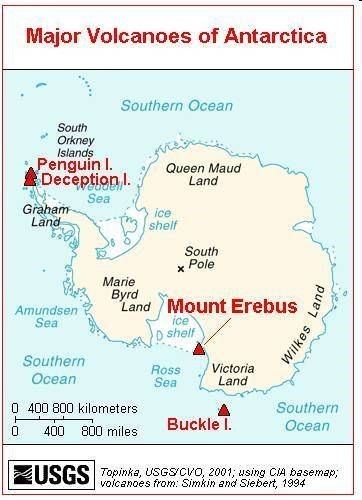
- 10 Mar 2025
In News:
- Volcanic ice caves beneath Mount Erebus host thriving microbial life, offering insights into extremophile survival and potential life on alien planets.
About Mount Erebus:
- Location: Ross Island, Antarctica, in the Ross Sea.
- Type:Glaciated intraplate stratovolcano; part of the Pacific Ring of Fire.
- Altitude:3,794 meters (12,448 feet) above sea level.
- Rank:Second tallest volcano in Antarctica (after Mount Sidley).
- Discovered: In 1841 by British explorer Sir James Clark Ross.
- Name Origin: Named after Ross’s ship, HMS Erebus.
Volcanic Activity:
- Southernmost active volcano on Earth.
- Continuously active since 1972.
- Eruptions are Strombolian in nature — small, explosive, with lava bombs ejected onto crater rim.
- Contains a persistent lava lake with alkalic lava, typical of rift volcanoes.
Proximity to Human Activity:
- Near McMurdo Station, the largest Antarctic research base, just ~40 km away.
Scientific Significance:
- The microbial ecosystems in volcanic ice caves could help understand:
- Life in extreme environments
- Astrobiological prospects on Mars or Europa
Bollgard-3

- 10 Mar 2025
In News:
Punjab's cotton sector is facing a severe crisis due to increasing pest infestations and declining yields. In response, there is a rising demand for advanced genetically modified (GM) cotton varieties, particularly Bollgard-3, ahead of the 2025 sowing season.
Key Facts:
Decline in Cotton Cultivation in Punjab:
- Cotton acreage in Punjab has drastically declined from ~8 lakh hectares (1990s) to just 1 lakh hectares (2024).
- The ginning industry has also shrunk — only 22 ginning units remain functional, down from 422 in 2004.
- The main causes are whitefly (2015–16) and pink bollworm (2018–19) infestations.
About Bollgard Series of Bt Cotton:
Version Introduced in India Features
Bollgard-1 2002 Contains Cry1Ac gene — limited pest resistance
Bollgard-2 2006 Added Cry2Ab gene — wider pest control, still ineffective against
whiteflies and pink bollworms
Bollgard-3 Not approved in India Contains Cry1Ac, Cry2Ab, and Vip3A — effective against
lepidopteran pests like pink bollworm
- Bollgard-3, developed by Monsanto, offers enhanced pest resistance, but remains unapproved in India despite global usage.
- Bt (Bacillus thuringiensis) is a soil-dwelling bacterium used in GM crops for pest resistance by producing insecticidal proteins.
Alternative in Pipeline – BG-2RRF:
- Bollgard-2 Roundup Ready Flex (BG-2RRF) is aherbicide-tolerant GM cotton variety pending final regulatory approval in India.
- Enables better weed control and potentially reduces pest hosts, boosting yield.
- Field trials for BG-2RRF were conducted in 2012–13, but commercial approval remains pending.
- Experts argue that regulatory hurdles are delaying the adoption of next-generation GM seed technologies, affecting India's cotton competitiveness.
Current Agronomic Recommendations:
- In absence of new GM varieties, experts suggest:
- High-density planting
- Drip fertigation
- Proper seeding and mulching
- However, pest management remains a critical issue under current practices.
Comparative Global Context:
- Countries like Brazil are using Bollgard-5, achieving yields of 2400 kg/ha, compared to 450 kg/ha in India.
- India's profit margin from cotton is just 15%, whereas Brazil enjoys 85% margins due to advanced biotech adoption.
Rare Civet Cat
- 10 Mar 2025
In News:
Recently, a rare civet cat, typically native to the Seshachalam forests near Tirumala, was unexpectedly sighted near Tadepalli in Guntur district, Andhra Pradesh. The animal entered a residential area, startling locals, and was later safely rescued and examined by forest officials.
About Civet Cats
- Taxonomy:Civets belong to the Viverridae family, which includes civets, genets, oyans, and linsangs. There are 15–20 species across 10–12 genera.
- Distribution:Found in Africa, southern Europe, and Asia, including eight wild species in India.
- Common Palm Civet and Small Indian Civet are widely distributed.
- The Malabar Large-spotted Civet (Viverracivettina) is critically endangered and endemic to the Western Ghats.
- Conservation Status:The Malabar Civet is listed as Critically Endangered under the IUCN Red List.
Physical Characteristics:
- Appearance: Cat-like, with thickly furred tail, pointed snout, and small ears.
- Size: Body length: 40–85 cm; Tail: 13–66 cm; Weight: 1.5–11 kg.
- Coloration: Usually buff or grayish, with black spots, stripes, or both.
Behavior and Habitat:
- Nocturnal and Solitary: Typically dwell in tree hollows, rocks, or similar secluded areas.
- Diet: Primarily frugivorous and insectivorous, occasionally feeding on small animals.
- Habitat Range: Though mostly forest-dwelling, rare sightings in urban zones have occurred, as seen in the Tadepalli incident.
Significance of Recent Sighting:
- The civet descended from Tadepalli hills and entered a home, prompting forest department intervention.
- Identified as a rare species similar to African civets.
- Medically examined, found healthy, and is to be rehabilitated into the wild.
- The incident highlights growing human-wildlife interactions and the need for urban wildlife awareness.
Dragon Copilot

- 10 Mar 2025
In News:
Microsoft has launched Dragon Copilot, a voice-activated AI assistant designed specifically for the healthcare sector. It aims to reduce administrative burdens on clinicians by automating documentation and providing quick access to medical information.
Key Features and Functionalities:
- Platform Integration: Part of Microsoft Cloud for Healthcare, Dragon Copilot integrates with Electronic Health Records (EHR) and is accessible via desktop, browser, or mobile app.
- Technology Base: Built on Nuance’s Dragon Medical One (DMO) and DAX (Dragon Ambient eXperience) platforms, which have supported transcription of billions of patient records and over 3 million ambient patient interactions.
- Voice & AI Capabilities:
- Uses natural language dictation and ambient listening technologies.
- Enhanced with generative AI and healthcare-specific safeguards.
- Allows drafting of memos, referral letters, clinical summaries, and after-visit notes in personalized formats.
- Facilitates real-time voice-to-text transcription and AI-generated notes via user prompts or templates.
- Supports automated search for verified medical information.
Benefits:
- Reduces clinician paperwork and burnout, enhancing focus on patient care.
- Survey Data (Microsoft Findings):
- Saves ~5 minutes per patient interaction.
- 70% clinicians reported reduced fatigue.
- 62% were less likely to leave their organizations.
- 93% patients reported improved experiences.
Concerns and Risks of Healthcare AI:
- AI Hallucinations: Tools like OpenAI’s Whisper have produced fictitious content, including inappropriate or incorrect medical information.
- Regulatory Caution:
- The US FDA warns of risks from generative AI in healthcare, including false diagnoses or biased outputs.
- Emphasizes the need for transparent and accountable development practices.
- Microsoft’s Response:
- Claims to have integrated “clinical, chat, and compliance safeguards” into Dragon Copilot.
- Built in alignment with Microsoft’s Responsible AI principles, although technical specifics remain undisclosed.
Broader AI Healthcare Landscape:
- Companies like Google Cloud, Abridge, and Suki are developing similar AI-based healthcare assistants.
- Growing interest in generative AI for reducing clinician workload and improving patient outcomes is driving innovation and investment across the sector.
Doubtful (D) Voters in Assam
- 10 Mar 2025
In News:
The issue of ‘D’ (Doubtful) voters recently resurfaced in the Assam Legislative Assembly, with the Opposition demanding closure of the state’s lone detention centre (now termed a transit camp) and the tabling of the National Register of Citizens (NRC) report.
Who are ‘D’ Voters?
‘D’ voters are individuals whose Indian citizenship is under suspicion. Introduced by the Election Commission of India (ECI) in 1997 specifically for Assam, these individuals are barred from voting or contesting elections until their citizenship is verified.
Legal and Procedural Aspects:
- Not Defined in Law: The term 'Doubtful Voter' is not defined under the Citizenship Act, 1955 or the Citizenship Rules, 2003.
- As per Citizenship Rules, 2003:
- The Local Registrar must mark individuals with doubtful citizenship in the National Population Register (NPR) for further verification.
- Affected individuals must be informed through a prescribed format and granted a hearing before the Taluk or Sub-district Registrar.
- A decision on citizenship status must be made within 90 days.
- Foreigners Tribunal (FT): Cases of D-voters are referred to FTs, which decide whether the person is an Indian citizen or a foreigner. Based on the verdict, individuals can be:
- Cleared and subsequently included in the NRC and electoral rolls.
- Declared foreigners, leading to deportation or detention.
Key Features of D-Voter Status:
- Temporary Tag: The 'D' classification is not permanent and must be resolved within a set timeframe.
- Appeal Mechanism: Individuals can appeal to the Foreigners Tribunal for clearance.
- Impact on Families: Often, some members of a family are citizens while others are tagged as D-voters, leading to legal and social complications.
- Detention Concerns: Several individuals, including potential Indian citizens, have been detained for years without a clear mechanism for release.
Recent Developments:
- Political demands in Assam include the closure of detention centres and transparency regarding NRC implementation.
- Debates continue over the legal ambiguity and humanitarian implications of the D-voter category.
U.S. Reciprocal Tariffs
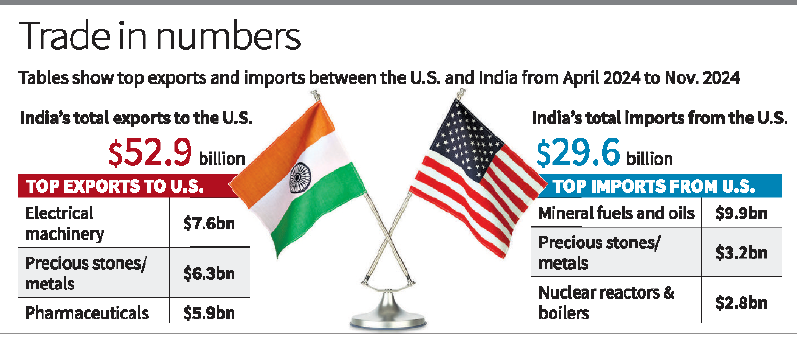
- 09 Mar 2025
In News:
On April 2, 2025, the United States is set to implement reciprocal tariffs as announced by President Donald Trump during his address to a joint session of the U.S. Congress. The move targets major trade partners including India, China, the European Union, Canada, and Mexico.
What Are Reciprocal Tariffs?
- Definition: A reciprocal tariff is a trade measure in which a country imposes import duties equal to the tariffs its exports face in other nations.
- Objective: To establish a level playing field, correct trade imbalances, and respond to unfair tariff structures by trading partners.
- Application:
- If a foreign nation imposes high tariffs on U.S. goods, the U.S. will match that rate on goods imported from that country.
- Applies to goods, services, and even non-tariff barriers limiting U.S. market access.
Why Now? Trump’s Trade Strategy
- President Trump cited India’s high tariffs on automobile imports (reportedly over 100%) as an example of unfair trade.
- The U.S. also flagged China, EU, Brazil, and Mexico for imposing higher duties on U.S. exports.
- Trump emphasized that the U.S. has been “taken advantage of for too long” and that reciprocal tariffs are necessary to protect American jobs and industry.
WTO Implications
- May violate WTO's Most-Favoured-Nation (MFN) rule, which mandates equal treatment of trade partners.
- The U.S. could invoke Article XX (general exceptions) or Article XXI (national security exception) of the WTO Agreement to justify its policy.
Potential Impacts of Reciprocal Tariffs
Positive Impacts Negative Impacts
Boosts U.S. manufacturing by reducing import dependency May trigger retaliatory tariffs,
escalating trade wars
Encourages tariff reductions by partner nations Leads to higher import prices and
consumer inflation
Aims to reduce the trade deficit Causes economic uncertainty
and hurts investor confidence
Promotes domestic job creation May lead to WTO disputes and
strain diplomatic relations
PUNCH Mission

- 09 Mar 2025
In News:
NASA is set to launch the PUNCH (Polarimeter to Unify the Corona and Heliosphere) mission on March 6, 2025, from Vandenberg Space Force Base, California. It will be the third major solar mission launched globally in the past 18 months.
About the PUNCH Mission:
Aspect Details
Agency NASA (National Aeronautics and Space Administration)
Launch Date March 6, 2025
Mission Objective Study the Sun’s corona (outer atmosphere) and how solar wind evolves as it moves
into the heliosphere
Unique Features - First dedicated mission to image the transition from the corona to the heliosphere
- Will use four identical suitcase-sized satellites for continuous imaging of the inner corona
Importance - Improves understanding of space weather
- Helps predict solar storms, safeguarding satellites, astronauts, and
communication networks
What is the Solar Cycle?
- The solar cycle is an ~11-year periodic change in the Sun’s magnetic field, where the north and south poles flip positions.
- This cycle governs the level of solar activity, including sunspots, solar flares, and coronal mass ejections (CMEs).
- Solar Maximum: Period of peak activity with increased sunspots and solar eruptions.
- Solar Minimum: Period of least activity.
The current solar cycle began gaining momentum around May 2022, and solar activity remained above normal through 2024. The solar maximum is anticipated around 2025, offering an ideal window for solar observation.
Why the Surge in Solar Missions?
- Solar maximum periods offer the best conditions to observe high-energy events like flares and CMEs.
- Scientists aim to maximize data collection before the next solar minimum (next solar max expected ~2035–36).
- Monitoring solar activity is crucial because solar storms can disrupt satellite communications, navigation systems, and power grids on Earth.
Recent Major Solar Missions (2023–25):
Mission Agency Launch Date Purpose
Aditya-L1 ISRO (India) Sept 2, 2023 India’s first solar observatory; studies solar flares, solar winds, and magnetic fields
Proba-3 ESA (Europe) Dec 4, 2024 Dual-satellite mission to study solar corona and space weather
PUNCH NASA (USA) Mar 6, 2025 First mission to study continuous evolution from solar corona to heliosphere
Lake Tanganyika
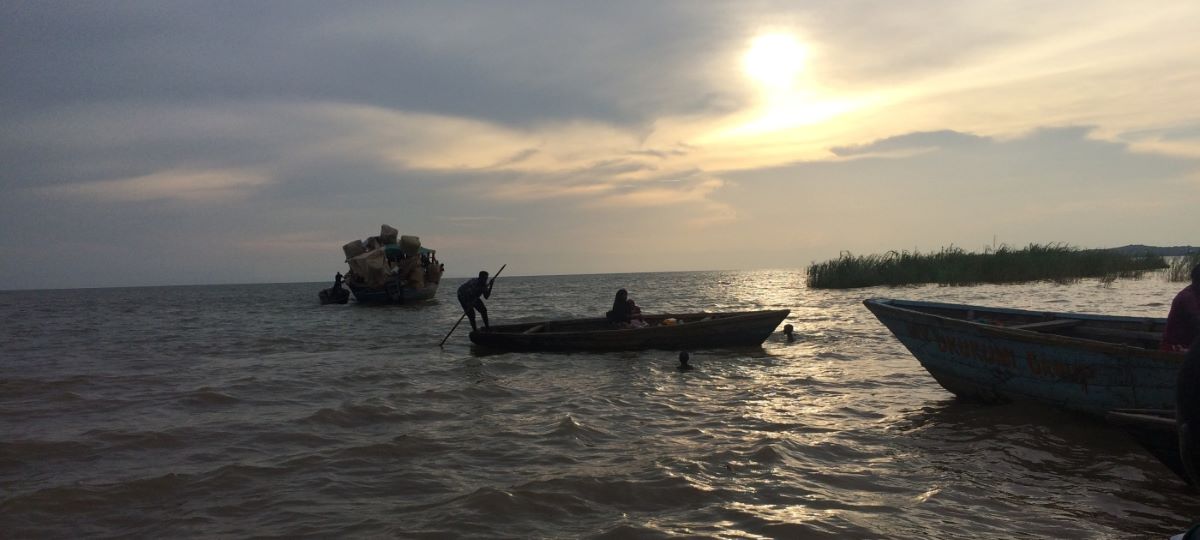
- 09 Mar 2025
In News:
- The countries bordering Lake Tanganyika—Burundi, Democratic Republic of Congo (DRC), Tanzania, and Zambia—have launched a five-year biodiversity conservation project.
- The initiative, led by the United Nations Environment Programme (UNEP) and funded by the Global Environment Facility (GEF), aims to tackle transboundary threats to the lake’s biodiversity.
About Lake Tanganyika:
Feature Details
Location East Africa
Bordering Countries Burundi, DRC, Tanzania, Zambia
Length Over 400 miles (Longest freshwater lake in the world by length)
Depth One of the world’s deepest lakes
Geological Setting Located in the Western Rift Valley
Major Inflows Malagarasi, Ruzizi, Kalambo Rivers
Outflow Lukuga River (into the Lualaba River)
Flora Located at the floral transition zone of eastern and western Africa; oil palms found along shores
Livelihood Agriculture (rice, subsistence crops) and fishing are common
Key Features of the Conservation Project:
- Project Title:Biodiversity Conservation, Sustainable Land Management and Enhanced Water Security in Lake Tanganyika Basin
- Budget: USD 14.5 million
- Implementing Agency: UNOPS
- Strategic Partner: Lake Tanganyika Authority
- Framework Basis: Convention on the Sustainable Management of Lake Tanganyika (2003)
Project Objectives:
- Transboundary Cooperation: Foster collaboration among the four bordering nations
- Sustainable Fisheries: Establish fishing standards, including gear type, mesh sizes, and quotas
- Critical Habitat Protection: Secure core conservation zones in three protected areas and ensure sustainable use in buffer zones
- Community Involvement: Promote local participation in fisheries management and livelihood alternatives
- Land Restoration: Rehabilitate degraded landscapes and reduce environmental stressors
- Biodiversity Protection: Align with the Kunming-Montreal Global Biodiversity Framework goals
Why It Matters:
- Biodiversity Hotspot: The basin supports over 10 million people and is home to rich and unique freshwater biodiversity
- Threats: Habitat destruction, overfishing, pollution, invasive species, climate change, and uncoordinated lake management
- Alarming Trend: Global freshwater biodiversity has declined by 84% in the last century, faster than terrestrial or marine biomes
- Economic Risk: The global value of lake ecosystem services (~USD 3 trillion) could drop by 20% by 2050 if degradation continues
Marbled Cat
- 09 Mar 2025
In News:
- Rare marbled cats (Pardofelis marmorata) were recently captured on camera traps in DehingPatkai National Park, located in Assam's Tinsukia district.
- This was part of a two-month biodiversity monitoring initiative launched in November 2024 by the Assam Forest Department in collaboration with the Wildlife Institute of India (WII).
Significance of the Sighting:
- 2–3 individuals were recorded, marking a significant discovery for biodiversity documentation in Northeast India.
- Assam's Forest Minister and conservationists hailed the event as a testament to successful conservation efforts and the rich biodiversity of DehingPatkai.
About the Marbled Cat:
- Scientific Name: Pardofelis marmorata
- IUCN Status: Near Threatened (NT)
- Habitat: Dense tropical and subtropical forests; found at elevations up to 2,500 metres
- Distribution:
- Countries: India, Nepal, Bhutan, Bangladesh, Myanmar, Thailand, Laos
- In India: Found primarily in Arunachal Pradesh, Assam, Meghalaya, and Nagaland
Physical Features:
- Small wild cat with distinctive marbled-patterned fur (brown/grey with black stripes and spots)
- Excellent arboreal climber, capable of leaping between trees
- Males weigh 4.5–9 kg; females weigh 2.5–5 kg
- Solitary and territorial; marks territory with scent
Conservation Implications:
- The sighting underscores the ecological value of DehingPatkai, a critical habitat for many rare and threatened species.
- Experts stress the need for continued research, habitat preservation, and protection of Eastern Himalayan forests to ensure the survival of elusive species like the marbled cat.
Cities Coalition for Circularity (C-3)
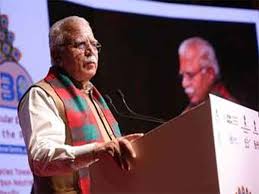
- 09 Mar 2025
In News:
Manohar Lal, Union Minister for Housing and Urban Affairs, announced the Cities Coalition for Circularity (C-3), a multi-nation alliance for city-to-city collaboration, knowledge-sharing, and private sector partnerships.
- Platform: 12th Regional 3R and Circular Economy Forum in Asia and the Pacific
- Venue: Rajasthan International Centre, Jaipur, Rajasthan
What is C-3?
- The Cities Coalition for Circularity (C-3) is a multi-national alliance aimed at enhancing city-to-city collaboration, knowledge-sharing, and public-private partnerships.
- It focuses on promoting circular economy principles, resource efficiency, and low-carbon development.
Organizers and Supporters:
- Organized by: Ministry of Housing and Urban Affairs (India), United Nations Centre for Regional Development (UNCRD), and Institute for Global Environmental Strategies (IGES)
- Supported by: United Nations ESCAP, Ministry of Environment (Japan), and other global organizations
Key Announcements:
- Formation of a Working Group to finalize the coalition’s structure and operational framework
- Adoption of the Jaipur Declaration (2025–2034) – a nonpolitical, nonbinding declaration guiding the next decade of action for resource-efficient and sustainable urban growth
Highlights of the Forum:
- Theme: Realizing Circular Societies Towards Achieving SDGs and Carbon Neutrality in Asia-Pacific
- 3R India Pavilion: Inaugurated by Union Minister and Rajasthan CM Bhajanlal Sharma, showcasing 40+ Indian and Japanese start-ups in waste management and circular solutions
What is a Circular Economy?
A circular economy is a regenerative system where:
- Products, materials, and resources are maintained in use for as long as possible
- Waste is minimized through reuse, recycling, remanufacturing, composting, etc.
- It aims to decouple economic growth from resource consumption, addressing climate change, pollution, and biodiversity loss.
Colossal A23a Iceberg
- 08 Mar 2025
In News:
The colossal iceberg A23a -- which is more than twice the size of Greater London and weighs nearly one trillion tonnes -- has been drifting north from Antarctica towards South Georgia island since 2020.
What is A23a?
A23a is currently the world’s largest iceberg, covering an area of approximately 3,672 sq. km—more than twice the size of Greater London—and weighing nearly one trillion tonnes. It calved from the Filchner Ice Shelf (Antarctica) in 1986 and remained grounded in the Weddell Sea for over 30 years before breaking free in 2020 and drifting northward.
Current Status:
As of March 2025, A23a appears to have run aground about 70–73 km from South Georgia Island in the South Atlantic Ocean. This grounding may spare the island’s rich wildlife, particularly penguins and seals, from disruption in feeding routes and breeding patterns.
Ecological Implications:
- If it had drifted closer, it could have blocked access to feeding grounds, leading to increased mortality of chicks and pups.
- In its current position, nutrients released by its melting and grounding may enhance marine food availability, supporting the local ecosystem.
- This comes as a relief after a difficult season caused by an avian flu outbreak among local wildlife.
Geopolitical Context:
- South Georgia Island is a British Overseas Territory administered by the UK but also claimed by Argentina.
- There is no permanent human population on the island, minimizing direct human impact.
Iceberg Dynamics & Climate Change Link:
- Icebergs such as A23a are natural parts of the Antarctic ice sheet lifecycle, calving from glaciers or ice shelves.
- They are made of freshwater ice, with around 90% submerged below the surface.
- While large icebergs are not new, the rate of calving and ice loss has accelerated, with Antarctic ice shelves losing ~6,000 billion tonnes of mass since 2000.
- Scientists warn that a global temperature rise of 1.5–2°C above pre-industrial levels may trigger irreversible melting, potentially causing sea-level rise of several metres.
Navigation and Fishing Impact:
- The iceberg currently poses no danger to shipping due to its visibility and size.
- However, as it breaks into smaller fragments (bergy bits), it may pose navigation hazards and force commercial fishing vessels to avoid the area.
Colossal A23a Iceberg
- 08 Mar 2025
In News:
The colossal iceberg A23a -- which is more than twice the size of Greater London and weighs nearly one trillion tonnes -- has been drifting north from Antarctica towards South Georgia island since 2020.
What is A23a?
A23a is currently the world’s largest iceberg, covering an area of approximately 3,672 sq. km—more than twice the size of Greater London—and weighing nearly one trillion tonnes. It calved from the Filchner Ice Shelf (Antarctica) in 1986 and remained grounded in the Weddell Sea for over 30 years before breaking free in 2020 and drifting northward.
Current Status:
As of March 2025, A23a appears to have run aground about 70–73 km from South Georgia Island in the South Atlantic Ocean. This grounding may spare the island’s rich wildlife, particularly penguins and seals, from disruption in feeding routes and breeding patterns.
Ecological Implications:
- If it had drifted closer, it could have blocked access to feeding grounds, leading to increased mortality of chicks and pups.
- In its current position, nutrients released by its melting and grounding may enhance marine food availability, supporting the local ecosystem.
- This comes as a relief after a difficult season caused by an avian flu outbreak among local wildlife.
Geopolitical Context:
- South Georgia Island is a British Overseas Territory administered by the UK but also claimed by Argentina.
- There is no permanent human population on the island, minimizing direct human impact.
Iceberg Dynamics & Climate Change Link:
- Icebergs such as A23a are natural parts of the Antarctic ice sheet lifecycle, calving from glaciers or ice shelves.
- They are made of freshwater ice, with around 90% submerged below the surface.
- While large icebergs are not new, the rate of calving and ice loss has accelerated, with Antarctic ice shelves losing ~6,000 billion tonnes of mass since 2000.
- Scientists warn that a global temperature rise of 1.5–2°C above pre-industrial levels may trigger irreversible melting, potentially causing sea-level rise of several metres.
Navigation and Fishing Impact:
- The iceberg currently poses no danger to shipping due to its visibility and size.
- However, as it breaks into smaller fragments (bergy bits), it may pose navigation hazards and force commercial fishing vessels to avoid the area.
Carbon Intensity
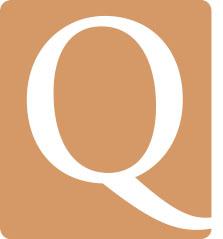
- 08 Mar 2025
What is Carbon Intensity?
Carbon intensity refers to the amount of carbon dioxide (CO?) emitted per unit of output in a particular sector or economy. It integrates environmental accountability into performance metrics across industries and nations.
- Sectoral Carbon Intensity: For example, in the steel sector, it is measured as tonnes of steel produced per tonne of CO? emitted.
- National Carbon Intensity: At the country level, it is calculated by dividing GDP per capita by CO? emissions, offering insights into how efficiently a nation grows economically while managing emissions.
Why is Carbon Intensity Important?
- It allows for the tracking of emissions relative to economic or production output, highlighting whether growth is becoming cleaner over time.
- It enables comparison across sectors and geographies by normalizing emissions data.
Relevance for India and Global Commitments:
- Under the Paris Agreement (2015), India has committed to reducing the emissions intensity of its GDP by 45% by 2030 from 2005 levels.
- Monitoring carbon intensity helps India evaluate progress toward this Nationally Determined Contribution (NDC) goal while ensuring sustainable development.
Global Context:
- China recently reported a 3.4% reduction in carbon intensity in 2024, although it fell short of its 3.9% target.
- Such data underscores the challenge of balancing economic growth with climate responsibility, especially for large emitters.
Quantum Computing
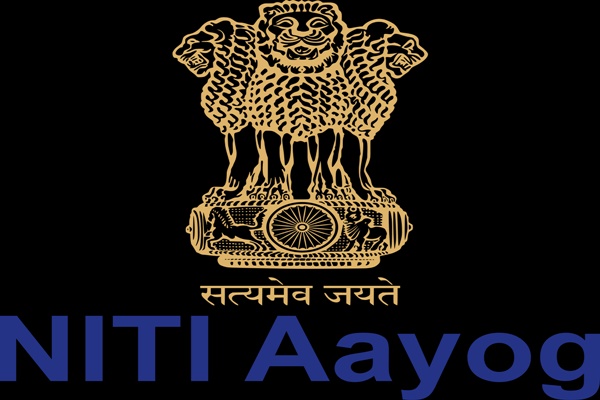
- 08 Mar 2025
In News:
NITI Ayog releases strategic paper on implication of quantum computing on national security.
What is Quantum Computing?
Quantum computing utilizes quantum bits (qubits), which leverage the principles of superposition and entanglement, enabling them to exist in multiple states simultaneously. Unlike classical bits (0 or 1), qubits can perform parallel computations, exponentially increasing processing power.
Global Landscape and India's Position
- Global Investments: Over $40 billion invested by 30+ nations.
- China: $15 billion (leader)
- USA and EU: Close followers
- India: Launched the National Quantum Mission (NQM) in 2023 with a budget of ?6,003 crore (~USD 750 million) to boost indigenous capabilities in computing, cryptography, communication, and sensing.
National Quantum Mission (NQM): Key Highlights
- Timeframe: 2023–2031
- Quantum Computers: Build systems with 50–1000 physical qubits using superconducting, photonic, and other platforms
- Secure Communication: Satellite-based secure quantum links over 2000 km within India and long-distance secure communication with other nations
- Quantum Sensing & Metrology: Development of precision navigation tools like atomic clocks and magnetometers
- Thematic Hubs (T-Hubs): To be established in premier R&D institutes in four domains:
- Quantum Computing
- Quantum Communication
- Quantum Sensing & Metrology
- Quantum Materials & Devices
Quantum Technology in Defence& National Security
- Cybersecurity
- Existing encryption standards will become obsolete.
- Urgent need for Post-Quantum Cryptography (PQC) to protect critical digital infrastructure.
- Signals Intelligence (SIGINT) & Espionage
- Quantum computers can decrypt communications at scale, risking exposure of classified diplomatic and military data.
- Enables real-time data processing for advanced surveillance.
- Military Applications
- Quantum materials improve stealth detection and weapon precision.
- Enhances autonomous weapons and navigation in GPS-denied environments.
- Logistics & Planning: Quantum AI can optimize defence logistics, battlefield resource allocation, and strategic decision-making.
- Economic Security: Quantum computing can protect or exploit vulnerabilities in financial systems, posing potential risks to economic stability.
Challenges for India
- Funding Gap: India’s allocation is modest compared to global peers.
- Hardware Dependence: Relies on imports for cryogenic systems, high-purity materials, and specialized lasers.
- Limited Industry Participation: India's ecosystem is academia-driven, with limited private sector engagement.
- Cybersecurity Risk: Legacy systems vulnerable to quantum attacks.
- Talent Shortage: Lack of trained quantum scientists and engineers.
- Geopolitical Race: Export restrictions by advanced countries can limit India’s access to key technologies.
Recent Advances in Quantum Technology
- Atom Computing/ColdQuanta: Improved qubit coherence for stable computations.
- IBM/Quantinuum: Enhanced qubit control and error reduction.
- Google Willow Chip: Introduced self-correcting qubit system.
- Microsoft Majorana-1: Developed topological qubits to improve fault tolerance.
Recommendations by NITI Aayog
- Policy & Preparedness:
- Form a National Quantum Task Force to monitor global trends and threats.
- Develop an Early Warning System for quantum vulnerabilities.
- Implement a PQC Transition Plan across critical sectors.
- R&D & Startups:
- Increase funding to scale quantum startups and indigenous hardware.
- Promote public-private partnerships to commercialize academic research.
- Supply Chain Development:Invest in domestic manufacturing for quantum components like chips and lasers.
- Global Engagements:
- Strengthen partnerships with the US, EU, and Japan.
- Advocate for easing export controls to access vital technologies.
T-72 Tanks
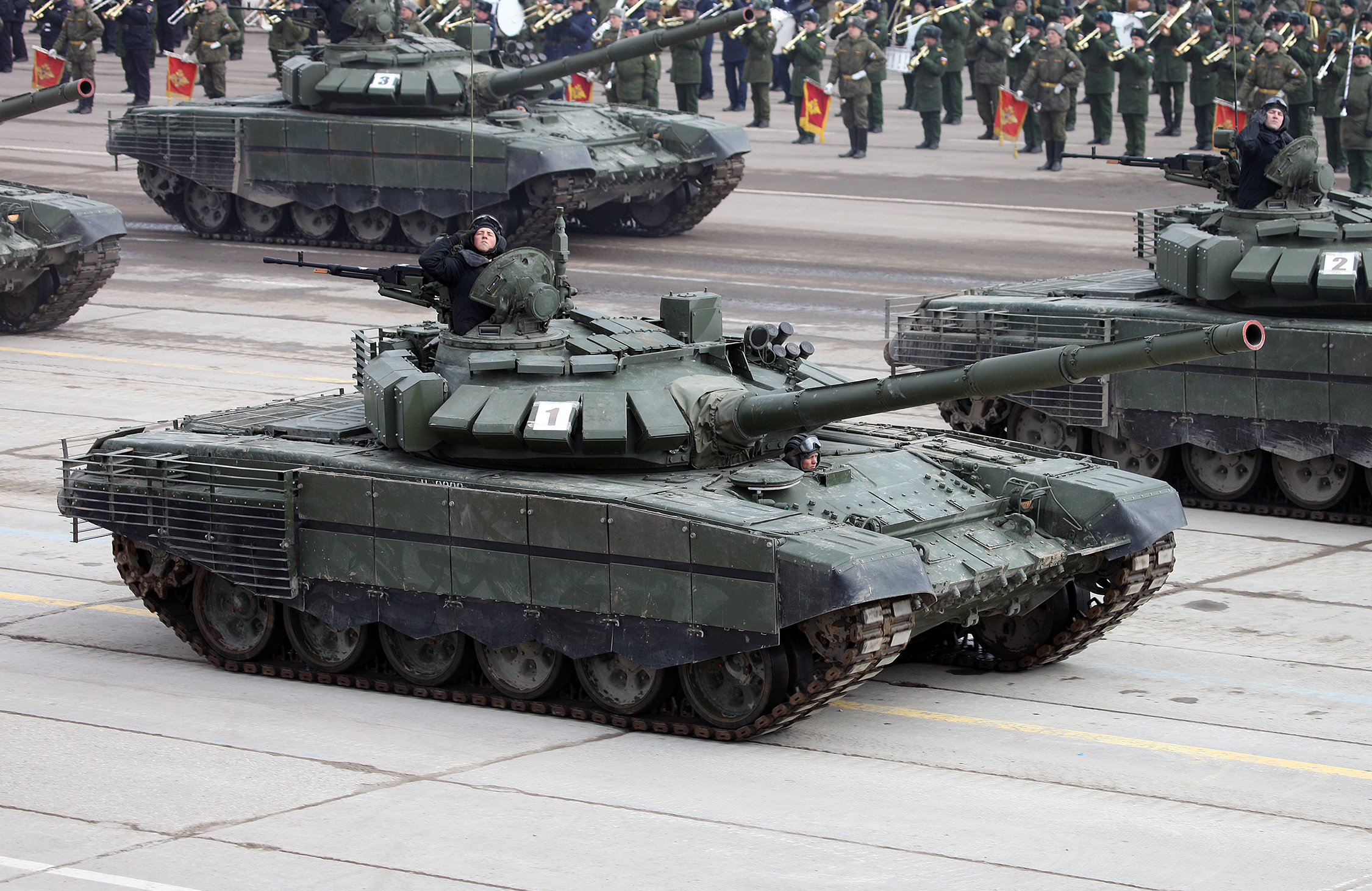
- 08 Mar 2025
In News:
India has signed a $248 million contract with Russia’s Rosoboronexport for the procurement of 1,000 horsepower (HP) engines to upgrade its fleet of T-72 main battle tanks (MBTs). This marks a significant step in enhancing the Indian Army's offensive and mobility capabilities.
Key Features of the Deal
- Engines to replace existing 780 HP ones in T-72 tanks.
- Delivered in fully formed, completely knocked down (CKD), and semi-knocked down (SKD) formats.
- Includes Transfer of Technology (ToT) to Armoured Vehicles Nigam Limited (AVNL) at the Heavy Vehicles Factory, Avadi (Chennai).
- Boosts the ‘Make in India’ initiative in the defence sector through local assembly and licensed production.
About T-72 Tanks
- Origin: Developed by the Soviet Union in the 1970s; designed by Uralvagonzavod.
- India’s Usage: Operates over 2,400 units, making it the backbone of India’s armored forces.
- Manufacturing in India: Locally produced and upgraded at the Heavy Vehicles Factory, Avadi.
Specifications
- Armament:
- 125 mm smoothbore main gun
- 7.62 mm coaxial machine gun
- 12.7 mm anti-aircraft machine gun
- Mobility: With new 1,000 HP engines, improves maneuverability and combat speed.
- Protection: Equipped with composite and reactive armour.
- Night Capability: Advanced thermal imaging systems.
- Operational Range:
- ~460 km on-road
- ~300 km off-road (with auxiliary fuel)
Strategic Significance
- Combat Readiness: Enhances battlefield performance in high-altitude and desert environments like Ladakh.
- Cost Efficiency: Upgrading older platforms is more economical than procuring new MBTs.
- India-Russia Defence Ties: Reinforces long-standing military cooperation between the two countries.
New Species of Jumping Spiders Discovered in Western Ghats
- 08 Mar 2025
In News:
Two new species of jumping spiders belonging to the genus Epidelaxia have been discovered from the Shendurney Wildlife Sanctuary in Kollam, Kerala, marking the first recorded presence of this genus in India. Previously, Epidelaxia was considered endemic to Sri Lanka.
Details of the Discovery
- Species: Epidelaxiafalciformis sp. nov. and Epidelaxiapalustris sp. nov.
- Discovered during field studies in December 2022 and April 2023.
- Conducted by researchers from:
- University of Kerala
- Saveetha Medical College, Chennai
- Bharata Mata College, Kochi
- Published in Zootaxa (Feb 2025), a peer-reviewed journal.
Physical Features
- Females: Yellow triangular mark on the prosoma (front body) and white orbital setae around the eyes.
- Males of E. falciformis: Brown carapace with a yellow-brown stripe.
- Males of E. palustris: Pale brown band along the side of the body.
- Size:
- E. falciformis: 4.39 mm
- E. palustris: 4.57 mm (males), 3.69 mm (females)
Ecological Context
- These species are highly adapted to dense foliage in the Western Ghats, a recognized global biodiversity hotspot.
- The discovery extends the known geographical range of the genus and highlights the rich, yet underexplored, arachnid diversity of the Western Ghats.
IRCTC and IRFC Granted ‘Navratna’ Status
- 07 Mar 2025
In News:
The Indian Railway Catering and Tourism Corporation (IRCTC) and Indian Railway Finance Corporation (IRFC) have been granted Navratna status by the Government of India, becoming the 25th and 26thNavratna CPSEs (Central Public Sector Enterprises) in India. This recognition enhances their operational autonomy and positions them for further growth and expansion.
What is Navratna Status?
Navratna status is a prestigious classification granted by the Department of Public Enterprises (DPE) under the Ministry of Finance to select CPSEs that demonstrate exceptional financial and operational performance. The status provides these enterprises with enhanced autonomy, empowering them to make decisions independently and engage in significant investments without needing government approval.
Eligibility Criteria for Navratna Status:
- Must be a Miniratna-I CPSE with a positive net worth.
- Must secure an Excellent or Very Good MoU rating for three of the last five years.
- Must score 60+ points on key financial indicators, such as net profit, net worth, and manpower cost.
- The board must have at least four independent directors.
Benefits of Navratna Status:
- Investment Autonomy: Ability to invest up to ?1,000 crore or 15% of net worth without government approval.
- Global Expansion: Freedom to form joint ventures, subsidiaries, and alliances globally.
- Increased Market Credibility: Attracts strategic partnerships and enhances business growth.
About IRCTC and IRFC
- Indian Railway Catering and Tourism Corporation (IRCTC):
- Establishment: 1999
- Ministry: Ministry of Railways, Government of India
- Key Functions:
- E-Ticketing: Manages online train reservations through portals and mobile apps.
- Catering Services: Operates onboard catering and manages railway food plazas.
- Tourism Services: Offers rail-based tourism packages, including luxury trains like Maharajas’ Express.
- Rail Neer: Supplies packaged drinking water for railway passengers.
- Indian Railway Finance Corporation (IRFC):
- Establishment: 12 December 1986
- Ministry: Ministry of Railways, Government of India
- Key Functions:
- Funding Indian Railways: Provides low-cost capital for railway expansion and modernization.
- Market Borrowings: Raises funds through bonds, external borrowings, and public offerings.
- Rolling Stock Leasing: Finances the procurement of locomotives, coaches, and wagons.
- Infrastructure Development: Supports the modernization and electrification of railway networks.
Performance of IRCTC and IRFC for FY 2023-24:
- IRCTC:
- Annual Turnover: ?4,270.18 crore
- Profit After Tax (PAT): ?1,111.26 crore
- Net Worth: ?3,229.97 crore
- IRFC:
- Annual Turnover: ?26,644 crore
- Profit After Tax (PAT): ?6,412 crore
- Net Worth: ?49,178 crore
Implications of Navratna Status for IRCTC and IRFC
The grant of Navratna status is a significant milestone for both IRCTC and IRFC, offering them several advantages:
- Operational Autonomy: Both entities can now make larger investments independently, enhancing their capabilities to drive further growth and development.
- Business Expansion: The status will facilitate the ability to enter into joint ventures, partnerships, and alliances, both within India and internationally.
- Enhanced Market Credibility: This recognition will likely attract more investors and strategic partners, boosting the financial health and market standing of IRCTC and IRFC.
Harpoon Missile
- 07 Mar 2025
In News:
The U.S. Air Force is exploring a new approach to naval warfare by integrating the Harpoon anti-ship missile onto its F-16 fighter aircraft. This development signifies a shift in operational capabilities and enhances the U.S. Air Force’s ability to conduct anti-surface warfare.
Overview of the Harpoon Missile:
The Harpoon missile is a subsonic anti-ship cruise missile developed by Boeing for the U.S. Navy, first introduced in 1977. It is designed to strike surface targets, such as ships and land-based structures, and is currently in service with over 30 countries, including India.
Key features:
- Length: 4.5 meters
- Weight: 526 kilograms
- Range: 90 to 240 kilometers
- Speed: Mach 0.85 (approximately 647 mph or 1,041 km/h)
- Guidance System: GPS-assisted inertial navigation and active radar seeker, enabling both anti-ship and land-strike capabilities
- Warhead: 221-kilogram blast warhead
- Launch Platforms: The Harpoon can be launched from various platforms including ships, submarines, aircraft, and shore batteries
- All-Weather Operations: Designed to perform under various environmental conditions, Harpoon can execute both over-the-horizon and sea-skimming maneuvers for high survivability.
U.S. Air Force Integration with F-16 Aircraft:
The integration of the Harpoon missile onto F-16 aircraft represents a strategic shift for the U.S. Air Force, as traditionally, the missile has been used exclusively by naval platforms. The 53rd Test and Evaluation Group demonstrated a new gateway system that allows for rapid integration of the Harpoon with the F-16, significantly enhancing its anti-surface capabilities.
This integration system enables communication between the missile and aircraft without requiring extensive modifications, potentially shortening the deployment timeline for advanced weaponry. The F-16 fighter aircraft, traditionally designed for air-to-air combat, would now also have the capability to engage surface targets, improving the Air Force’s combat readiness and operational versatility.
Implications for Naval Warfare:
The potential for deploying the Harpoon missile from F-16s would mark a shift in the U.S. Air Force’s role in naval warfare. Traditionally, the Air Force has not employed anti-ship missiles, relying instead on the Navy for such capabilities. The integration of Harpoon onto F-16s would diversify the operational roles of the aircraft, adding flexibility to U.S. military strategies and improving overall effectiveness in anti-surface warfare.
This move would also enable the Air Force to act more autonomously in surface combat scenarios, without relying solely on naval assets. The introduction of this capability could prove critical in multi-domain operations, where air, land, and sea forces must be seamlessly integrated to respond to evolving threats.
Future Developments:
The success of integrating the Harpoon missile onto the F-16 could pave the way for future projects involving the integration of other advanced weapon systems across various military platforms. The flexibility to adapt quickly and innovate beyond bureaucratic constraints is crucial in maintaining a strategic advantage and responding effectively to emerging threats.
The U.S. military’s ongoing commitment to technological advancements and interoperability across its branches signals its readiness to maintain supremacy in naval and aerial warfare. The integration of Harpoon onto F-16s is an example of this evolving capability, with potential implications for future military operations worldwide.
Payodhi Milk Bank at AIIMS
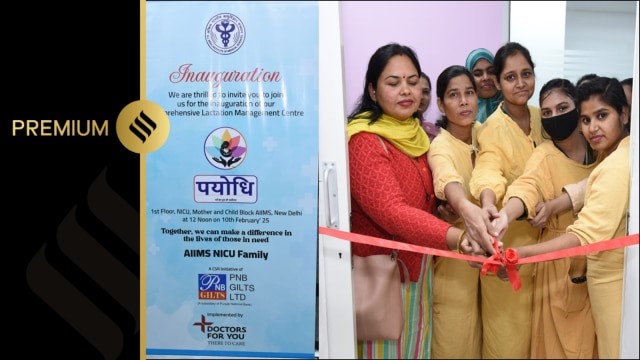
- 07 Mar 2025
In News:
Payodhi, a human milk bank and lactation management centre at AIIMS, New Delhi, has emerged as a critical facility for premature and critically ill newborns in the Neonatal Intensive Care Unit (NICU). Launched in September 2024, it provides pasteurised donor breast milk to newborns who require it due to medical conditions or where the mother cannot breastfeed.
Objectives:
- Provide Safe and Processed Human Milk: Ensures critically ill or premature infants receive the essential nutrients they need for survival, brain development, and immune system strengthening.
- Support Lactating Mothers: Provides counselling, milk donation, and storage facilities to lactating mothers, helping them contribute to milk banks if they have excess milk or cannot breastfeed.
- Free-of-Cost Service: The milk bank offers these services free of charge, ensuring equitable access to life-saving nutrition for vulnerable newborns.
- Global Standards: Payodhi follows guidelines set by the World Health Organization (WHO) and the Government of India on infant nutrition.
Significance:
- Lifesaving Nutrition: The use of donor milk reduces mortality risks in preterm babies, helping to prevent conditions like sepsis, necrotising enterocolitis (NEC), and retinopathy—common complications faced by premature infants.
- Prevents Milk Wastage: By utilising excess milk from donor mothers, Payodhi prevents the wastage of breast milk, which could otherwise be discarded.
- Support for Medical Conditions: The milk bank is crucial for infants whose mothers cannot produce sufficient milk due to medical reasons, such as pulmonary hypertension or those undergoing surgery.
Medical and Health Benefits of Donor Milk:
- Sepsis Reduction: Donor breast milk reduces the risk of sepsis by 19%, compared to formula feeding.
- Reduction in NEC: It significantly lowers the risk of necrotising enterocolitis (NEC) by 79%, a severe infection with a high mortality rate in premature infants.
- Improved Health Outcomes: Early initiation of breast milk within an hour of birth can reduce neonatal deaths by 22%. It also reduces feeding intolerance, vomiting, and shortens NICU stays.
Expansion and Reach:
Payodhi is one of around 90 milk banks in India, contributing to the nationwide effort to reduce neonatal deaths. AIIMS is working to expand its donor pool by reaching out to mothers whose babies have undergone surgery or those whose infants are in long-term NICU care. The milk bank also plans to reach out to working mothers, encouraging them to express and donate excess milk, benefiting both the infants and their own health.
Why Donating Milk is Beneficial:
Donating milk not only helps save newborns but also benefits the donor mothers by stimulating lactation and preventing milk suppression. The act of expressing milk helps maintain milk production, which is essential for the health of both the baby and the mother.
‘One Day as a Scientist’ Initiative

- 07 Mar 2025
In News:
In response to Prime Minister Narendra Modi’s call during his Mann Ki Baat address, the Ministry of Ayush has launched the ‘One Day as a Scientist’ initiative. This program offers students an immersive experience in scientific research, providing them hands-on exposure to advanced laboratory equipment and modern research methodologies. The initiative aims to nurture the scientific temperament among young minds and encourage them to explore the integration of traditional medicine with modern science.
Key Features of the Initiative:
- Hands-on Lab Experience: Students visit Ayush research institutions where they explore cutting-edge scientific tools and technologies, gaining firsthand insight into the research process.
- Mentorship by Experts: Scientists and researchers guide students, offering valuable insights into research methodologies and the potential of Ayush systems in mainstream healthcare.
- Integration of Traditional and Modern Sciences: The initiative emphasizes the role of Ayush therapies, including Ayurveda, Yoga, Naturopathy, and Homeopathy, combined with modern scientific advancements.
- Nationwide Participation: The program is implemented across various institutions such as the National Institute of Ayurveda, Central Council for Research in Homoeopathy (CCRH), and the Central Research Institute for Yoga & Naturopathy (CRIYN), facilitating student engagement in scientific exploration.
Objectives of the Initiative:
- Encouraging Youth Participation: By providing direct exposure to scientific research, the initiative aims to inspire students to pursue careers in research and innovation.
- Bridging the Gap Between Traditional and Modern Medicine: The program focuses on scientifically validating and innovating traditional medicine, making it an integral part of India’s healthcare system.
- Fostering a Scientific Temperament: Students gain a deeper understanding of scientific processes, enhancing their curiosity and critical thinking, key traits for future leaders in research and innovation.
Alignment with National Science Day:
The National Science Day 2025 theme, “Empowering Indian Youth for Global Leadership in Science and Innovation for Viksit Bharat,” aligns perfectly with the goals of this initiative. The program aims to inspire students to become future leaders in science and innovation, contributing to India’s vision of becoming a developed nation.
Aadhaar Governance Portal

- 07 Mar 2025
In News:
The government has introduced the Aadhaar Governance Portal, a new initiative developed by the Ministry of Electronics and Information Technology (MeitY). This platform is designed to streamline the approval process for Aadhaar authentication requests and further enhance citizen services.
Key Features:
- Simplified Authentication Process: The portal offers a step-by-step guide to help both government and private entities apply for Aadhaar authentication. It aims to improve the overall delivery of services, reducing administrative delays.
- Seamless Onboarding: Entities can now access detailed Standard Operating Procedures (SOPs) for onboarding Aadhaar authentication services. The portal serves as a comprehensive resource for entities seeking authentication approval.
- Wide Applications Across Sectors: The portal will be used for Aadhaar authentication in multiple sectors, including healthcare, education, e-commerce, and hospitality. It enables citizens to access essential services with ease.
- Face Authentication: The integration of face authentication in customer-facing applications will allow for anytime, anywhere authentication, enhancing the flexibility and accessibility of services.
Impact on Governance:
This initiative comes as part of the government's broader agenda to support good governance through technology and improve the delivery of welfare services. The new rules, introduced under the Aadhaar Authentication for Good Governance (Social Welfare, Innovation, Knowledge) Rules, 2025, aim to enhance service delivery and simplify processes for both citizens and service providers.
Role of Aadhaar:
Aadhaar, a 12-digit unique identification number, serves as proof of identity linked to an individual’s biometric and demographic information. Launched by UIDAI in 2009, Aadhaar has become integral to the delivery of government services and is now widely used by private entities for identification purposes.
With its ability to ensure verified identities, Aadhaar is crucial for streamlining processes in sectors ranging from welfare distribution to digital banking.
Juanga Tribe
- 06 Mar 2025
In News:
The National Human Rights Commission (NHRC) has sought an Action Taken Report (ATR) from the District Magistrate of Keonjhar, Odisha, over alleged human rights violations concerning the Juanga tribe, a Particularly Vulnerable Tribal Group (PVTG) in the region.
About Juanga Tribe
- One of 13 PVTGs among 62 tribal communities in Odisha.
- Population: ~50,000 (2011 Census).
- Primarily located in Keonjhar and Dhenkanal districts, especially in the Gonsaika hills of Banspal block, Keonjhar.
- Language: Juang, a Munda language of the Austroasiatic family.
- Known for their clan structure, kinship ties, and animistic beliefs blended with Hindu practices. Their sun god is regarded as the supreme deity.
- Traditional livelihood: Initially hunters and gatherers, later adapted to basket-weaving and bartering after forest reserves were declared during British rule.
- Traditional clothing: Women wore leaf girdles; men used small loincloths. Post-contact, they adopted external clothing practices.
Alleged Human Rights Violations
- The petition highlighted lack of basic amenities in 114 Juanga villages:
- Healthcare: Nearest PHC is 15 km away; residents must carry patients on cots. Limited access to Biju Swasthya Kalyan Yojana or National Health Card.
- Infrastructure: Absence of all-weather roads, schools, and safe drinking water.
- Tragic case: Deaths of SuniaJuanga (35), his wife Rashmi (30), and their six-month-old daughter due to lack of timely medical help in Jantari village.
- Social issues: No official records on child marriages, orphans, or other vulnerable groups among the Juangas.
NHRC's Directive
- NHRC asked for a detailed report within four weeks from the district administration.
- The petition also criticized underutilization of the District Mineral Foundation (DMF) funds, despite Keonjhar being one of the top fund-holding districts.
India–Nepal MoU on WASH Sector Cooperation

- 06 Mar 2025
In News:
Recently, India and Nepal signed a Memorandum of Understanding (MoU) to strengthen bilateral cooperation in the Water, Sanitation, and Hygiene (WASH) sector, including waste management. The signing ceremony took place at Sushma Swaraj Bhawan, New Delhi.
Key Objectives and Components of the MoU
- Capacity Building: Training programs for Nepali personnel in water resource management.
- Technology and Knowledge Transfer: Exchange of best practices and innovations in WASH.
- Groundwater Management: Joint efforts on:
- Groundwater quality monitoring
- Artificial recharge
- Rainwater harvesting and conservation practices
Strategic Significance
- Promotes regional cooperation and sustainability in public health and water management.
- Nepal seeks to learn from India’s successful initiatives under the Jal Jeevan Mission and Swachh Bharat Abhiyan.
- The agreement includes official visits, site inspections, and regular bilateral meetings to monitor progress.
Sashakt Panchayat-Netri Abhiyan
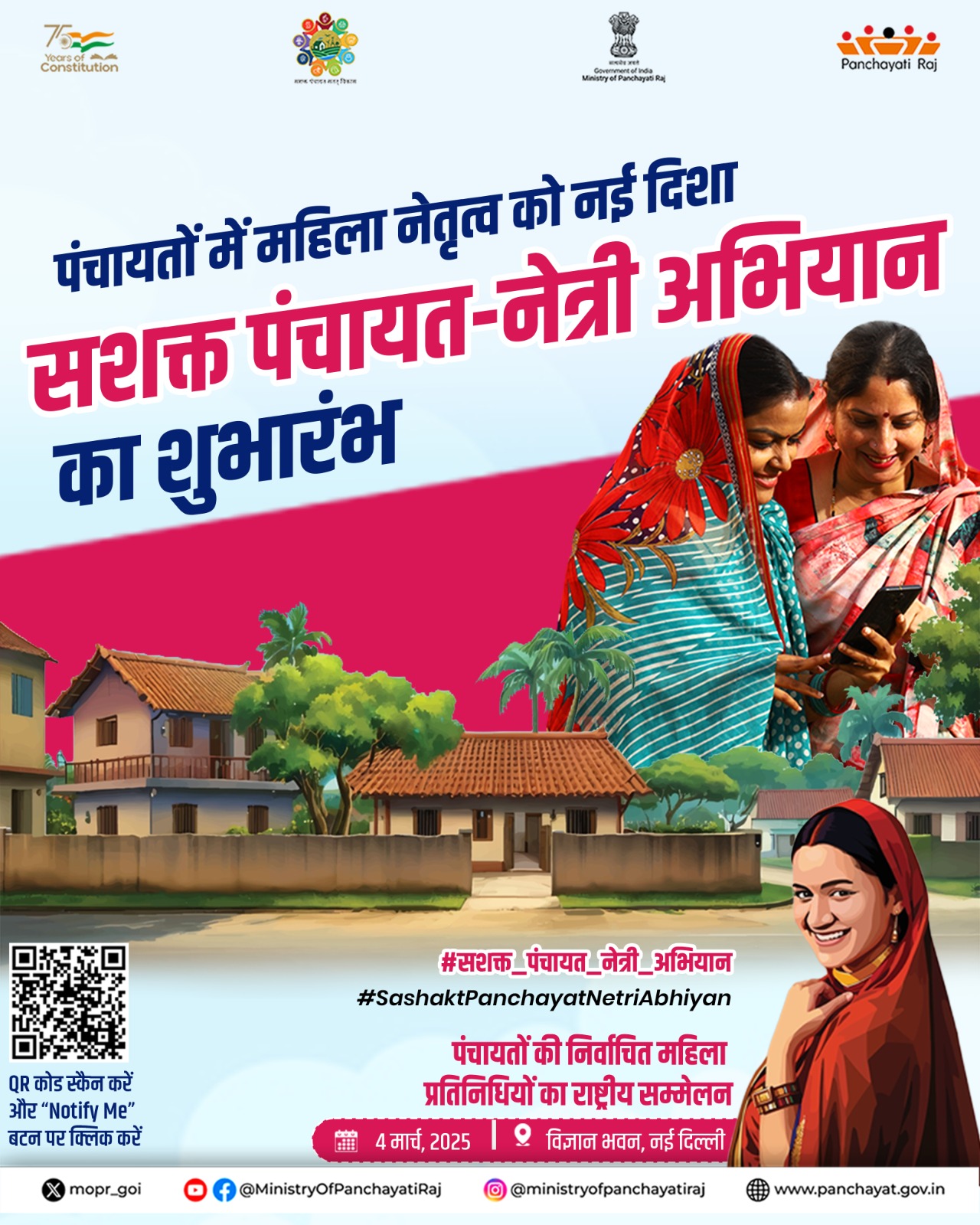
- 06 Mar 2025
In News:
The Ministry of Panchayati Raj launched the “Sashakt Panchayat-Netri Abhiyan” at a National Workshop held in Vigyan Bhawan, New Delhi. The initiative is a significant step toward gender-sensitive governance and enhancing the role of Women Elected Representatives (WERs) in Panchayati Raj Institutions (PRIs).
Key Features of the Initiative
- Objective: Capacity-building of WERs to strengthen their leadership, decision-making, and active participation in local governance.
- Scale: Over 1,200 WERs from across India participated.
- Representation: Women from all three tiers of PRIs took part, marking a first-of-its-kind national gathering.
Model Women-Friendly Gram Panchayats (MWFGPs)
- Launched alongside the Abhiyan.
- Aim: Establish at least one Model Women-Friendly Gram Panchayat in each district.
- Purpose: Promote gender-sensitive, inclusive, and girl-friendly local governance models.
Primer on Gender-Based Violence
- A "Primer on Law Addressing Gender-Based Violence and Harmful Practices" was released.
- Targeted at elected representatives to raise awareness and promote legal literacy regarding women's safety and rights.
Context and Background
- India has over 1.4 million women elected representatives in PRIs.
- Some states, like Bihar, report over 50% representation, surpassing the 33% constitutional mandate.
- The campaign also addresses the elimination of "Sarpanch Pati" culture, emphasizing the independent authority of WERs.
Panel Discussions and Sectoral Themes
- Themes included:
- Women’s participation and leadership in PRIs
- Health, education, safety, digital empowerment, and economic opportunities for women
Cultural Integration and Recognition
- Cultural performances by UNFPA celebrated women’s achievements.
- Outstanding WERs from various states/UTs were felicitated for contributions to rural governance.
Significance
- Aligns with PM Narendra Modi’s “Mann Ki Baat” (119th episode) highlighting Nari Shakti in nation-building.
- Reinforces commitment to inclusive, safe, and socially just Gram Panchayats.
Giloy (Tinosporacordifolia)
- 06 Mar 2025
In News:
Giloy, also known as Guduchi and referred to as Amrita in Sanskrit—meaning the "herb of immortality"—is gaining global attention for its therapeutic potential, with scientific research on the herb witnessing a remarkable surge.
Surge in Scientific Publications
According to PubMed, a globally recognised biomedical database, there has been a 376.5% increase in research publications on Giloy between 2014 and 2024:
- 2014: 243 studies
- 2024: 913 studies
This significant rise reflects growing interest in natural and plant-based therapies, particularly after the COVID-19 pandemic, which intensified focus on immunity boosters and holistic healthcare.
Therapeutic Properties and Uses
- Giloy is used in Ayush systems for:
- Fever management
- Gouty arthritis
- Autoimmune diseases
- Inflammatory disorders
- Cancer therapy (emerging evidence)
- Bioactive compounds in Giloy have shown:
- Immunomodulatoryeffects
- Anti-inflammatoryaction
- Adaptogenicandantiviralproperties
Botanical & Agricultural Features
- Scientific name: Tinosporacordifolia
- Distribution: Widely found across India
- Growth conditions:
- Grows in most soil types
- Propagated via stem cuttings (May–June)
- Large climber with corky, grooved stems
Recent Research Highlights
- Feb 2025 (Gujarat University): Giloy extracts showed promise in HPV-positive cervical cancer treatment through immunomodulation.
- Jan 2025 (Tata Memorial Centre, Mumbai): Giloy-based phytopharmaceuticals were effective in managing Idiopathic Granulomatous Mastitis (IGM), offering a safe, steroid-free, and cost-effective alternative to surgery.
Government Initiatives
- The Ministry of Ayush has launched a technical dossier on Giloy, compiling scientific research and therapeutic insights.
- Aim: Promote evidence-based integration of Ayurveda with modern healthcare systems.
- Emphasis on global collaboration, research funding, and mainstreaming traditional medicine.
Recent ASI Discoveries in Sri Lankamalleswara Wildlife Sanctuary
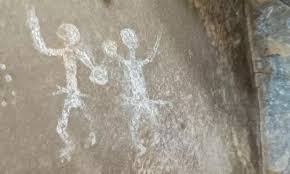
- 06 Mar 2025
In News:
The Archaeological Survey of India (ASI) recently made significant archaeological findings in the Sri Lankamalleswara Wildlife Sanctuary, located in the Kadapa district of Andhra Pradesh. During an epigraphical survey, ASI discovered three rock shelters, rock paintings, and 30 inscriptions, highlighting the region’s historical and cultural significance.
Key Facts:
- Location: Kadapa district, Andhra Pradesh.
- Water bodies:
- The sanctuary forms the catchment area of the Pennar River.
- The Telugu Ganga Canal flows through the eastern part and drains into the Pennar.
Biodiversity:
- Vegetation types:
- Southern tropical dry deciduous forests (hills)
- Scrub forests (plains)
- Southern dry mixed deciduous forests
- Tropical thorn forests
- Tropical dry evergreen forests
- Flora:
- Rare and endangered species: Red Sanders, Sandalwood
- Riparian vegetation: Terminalia spp., Syzygium spp. (Jamun), Wild Mangoes, Anogeissuslatifolia, Phoenix spp., Bamboo, Hardwickiabinata
- Fauna:
- Notable species: Common toad, Bullfrog, Common Indian skink, Green vine snake
- Critically endangered species: Jerdon’s Courser — this sanctuary is the only known habitat of this bird.
World Wildlife Day 2025
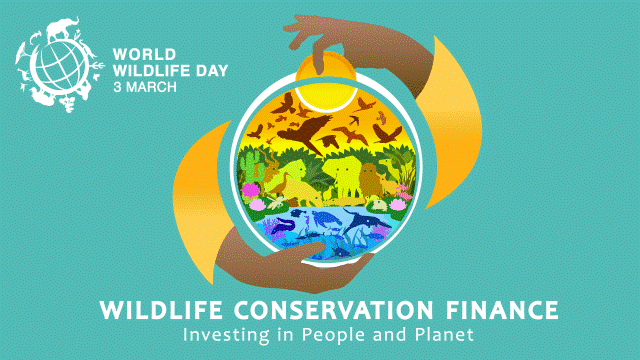
- 05 Mar 2025
In News:
World Wildlife Day is observed on March 3 every year, and in 2025, it will be observed under the theme of “Wildlife Conservation Finance: Investing in People and Planet.”
Key Details:
- Declared by: United Nations General Assembly (UNGA)
- First Observed: 2014
- Occasion: Commemorates the signing of CITES (Convention on International Trade in Endangered Species of Wild Fauna and Flora) in 1973.
- Theme 2025:“Wildlife Conservation Finance: Investing in People and Planet”
Purpose and Significance
World Wildlife Day is an annual UN-recognized global event aimed at:
- Raising awareness about wild fauna and flora.
- Highlighting threats such as climate change, poaching, habitat destruction, and illegal wildlife trade.
- Encouraging global cooperation for wildlife protection.
- Promoting innovative financing models to bridge the estimated $824 billion global biodiversity funding gap.
2025 Theme Focus: Conservation Finance
The 2025 theme calls for sustainable financial strategies, emphasizing:
- Wildlife Conservation Bonds
- Debt-for-Nature Swaps
- Green Bonds and Carbon Credits
- Payments for Ecosystem Services (PES)
- Public-Private Partnerships
These mechanisms aim to support conservation while fostering economic opportunities for local communities.
Timeline of Key Events
- 1973: CITES adopted.
- 2013: UNGA designates March 3 as World Wildlife Day.
- 2014: First official celebration.
- 2021: Theme – Forests and Livelihoods.
- 2025: Theme – Finance for Conservation.
Wildlife Status in India
- Protected Areas: 1,014 total (as of 2024), including:
- 106 National Parks
- 573 Wildlife Sanctuaries
- 115 Conservation Reserves
- 220 Community Reserves
(Covers ~5.32% of India’s total area)
- Tiger Population (2022): 3,682 – ~75% of global wild tigers
- Asiatic Lion Population (2020): ~674 (only in Gujarat's Gir Forest)
- India's Biodiversity Share:
- 7.6% of global mammal species
- 14.7% of amphibians
- 6% of birds and reptiles
- 6% of flowering plants
Major Causes of Wildlife Decline
- Habitat loss & fragmentation
- Illegal wildlife trade and poaching
- Climate change and pollution
- Invasive species
- Industrialization & urban expansion
Conservation Measures in India
- Project Tiger (1973): Boosted tiger numbers significantly.
- Project Elephant (1992): Focuses on elephant corridors and human-wildlife conflict mitigation.
- Wildlife Protection Act (1972): Key legal framework to safeguard endangered species.
- Eco-Sensitive Zones (ESZs): Buffer areas around protected habitats.
- Community Initiatives: Ecotourism, local participation in conservation.
Blue Ghost Mission

- 05 Mar 2025
In News:
Firefly Aerospace’s Blue Ghost lunar lander successfully achieved a stable, upright landing on the Moon's Mare Crisium region on March 2, 2025, marking it as the second private spacecraft to land on the Moon and the first to do so upright. This mission is a part of NASA’s Commercial Lunar Payload Services (CLPS) initiative.
Key Details of the Blue Ghost Mission
- Developer: Firefly Aerospace, Texas-based private aerospace firm
- Launch Date: January 15, 2025
- Launch Vehicle: SpaceX Falcon 9
- Landing Site: Near Mons Latreille, a volcanic formation in the Mare Crisium
- Descent & Duration: 16-day lunar orbit followed by powered descent; operates for one lunar day (14 Earth days)
Mission Objectives
- Scientific Research:
- Study heat flow from the Moon’s interior to understand its thermal history
- Analyze plume-surface interactions to refine lunar landing techniques
- Collect data on magnetic and electric fields to infer geological evolution
- Conduct X-ray imaging of Earth's magnetosphere
- Examine lunar dust dynamics, particularly its levitation due to solar radiation
- Investigate soil adhesion for improved lunar hardware design
- Technology Demonstration:
- Test radiation-hardened systems
- Evaluate the use of Global Navigation Satellite System (GNSS) signals on the Moon
Payload and Instruments
- Number of Payloads: 10 NASA scientific payloads
- Notable Tools:
- Vacuum device for soil collection
- Subsurface drill measuring temperature up to 3 meters deep
Significant Observations
- Eclipse Imaging: Scheduled to capture a total lunar eclipse (March 14)
- Lunar Sunset: Will image lunar horizon glow during sunset (March 16), a phenomenon first noted during Apollo 17
- Firsts Achieved:
- First commercial lander to land upright on the Moon
- First of three major private lunar missions scheduled in 2025
Relevance for India and the World
- Demonstrates the viability of public-private partnerships in deep space missions
- Advances NASA’s Artemis program by developing cost-effective lunar logistics
- Paves the way for international lunar commerce and exploration
Obesity in India: A Public Health Challenge

- 05 Mar 2025
In News:
Obesity has emerged as a critical public health issue in India, with rising prevalence across age groups and socio-economic strata. It is a key risk factor for non-communicable diseases (NCDs) like diabetes, cardiovascular diseases, and hypertension. Recognizing its growing burden, the Government of India has adopted a multi-ministerial, community-driven, and policy-integrated strategy to promote healthier lifestyles.
What is Obesity?
- Definition (WHO): Abnormal or excessive fat accumulation that presents a risk to health.
- Measurement: Body Mass Index (BMI = kg/m²)
- Body Mass Index (BMI), previously known as the Quetelet index, is a simple way to check if an adult has a healthy weight. It is calculated by dividing a person's weight in kilograms by their height in meters squared (kg/m²). To find BMI, take a person’s weight (kg) and divide it by their height (m) squared.
- WHO Standard:
- Overweight: BMI ≥ 25
- Obese: BMI ≥ 30
- Indian Criteria (lower threshold):
- Overweight: BMI 23–24.9 kg/m²
- Obese: BMI ≥ 25 kg/m²
- Morbid Obesity: BMI ≥ 35
Prevalence of Obesity
Global Trends (1990–2022):
- Children (5–19 yrs) with obesity: ↑ from 2% to 8%
- Adults with obesity: ↑ from 7% to 16%
India-Specific Data (NFHS-5, 2019–21):
- Overweight/obese: 24% women, 23% men
- Obese (15–49 yrs): 6.4% women, 4.0% men
- Children under 5 (overweight): ↑ from 2.1% (NFHS-4) to 3.4%
Causes of Obesity
- Increased consumption of processed, calorie-dense foods
- Sedentary lifestyle and urbanization
- Reduced physical activity
- Environmental and socio-economic factors
- Excessive use of edible oil, salt, and sugar in Indian diets
Key Government Initiatives to Combat Obesity
1. Ministry of Health and Family Welfare
- NP-NCD (National Programme for Prevention and Control of Non-Communicable Diseases):
- Integrated under Ayushman Bharat Health & Wellness Centres
- Focus: Screening, early diagnosis, IEC/BCC awareness, and NCD clinics
- Facilities: 682 District NCD Clinics, 191 Cardiac Units, 5408 CHC Clinics
2. Ministry of AYUSH
- All India Institute of Ayurveda (AIIA): Specialized treatments (Panchakarma, diet, yoga)
- Ayurswasthya Yojana (2021–22): Funds projects tackling obesity, diabetes, and NCDs
- Research by CCRAS: Validating Ayurvedic lifestyle interventions (Dincharya, Ahara, Yoga)
- Collaboration with CSIR for integrating Ayurveda with modern science
3. Ministry of Women and Child Development
- POSHAN Abhiyaan (2018):
- Focus: Nutrition for children, adolescent girls, pregnant/lactating women
- Mission Saksham Anganwadi &Poshan 2.0 (2021): Combines nutrition, health, wellness
- Use of PoshanVatikas, millet promotion, and fortified food
- Jan Andolan for community-level awareness
4. Ministry of Youth Affairs and Sports
- Fit India Movement (2019):
- Fitness pledges, Fit India School certification, community fitness programs
- Khelo India Programme (2016–17):
- Sports infrastructure and talent development
- Promotes sports culture and active lifestyles in youth
5. Food Safety and Standards Authority of India (FSSAI)
- Eat Right India Movement:
- Supply-Side Reforms:FoSTaC, hygiene ratings, food fortification
- Demand-Side Awareness: Eat Right Schools/Campus, DART Book, Magic Box
- Aaj Se Thoda Kam Campaign: Reduce fat, salt, and sugar intake
- RUCO Initiative: Repurposing Used Cooking Oil into biodiesel
- HFSS Food Labelling: Front-of-pack labels for High Fat, Salt, Sugar foods
Innovative Tools
Tool Description
DART Book Simple home tests for food adulteration
Magic Box 102 school-level food safety experiments
Food Safety on Wheels Mobile food testing & awareness vans
Fit India App Daily fitness tracking and motivation
India’s Way Forward: Towards Amrit Kaal
- Whole-of-government and whole-of-society approach
- Emphasis on lifestyle change, preventive healthcare, and regulation
- Stronger public health infrastructure and education
- Leveraging traditional wellness systems (Ayurveda & Yoga)
- Community empowerment via awareness drives and behavior change
Dramatic Performances Act, 1876
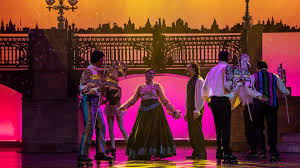
- 05 Mar 2025
In News:
Prime Minister Narendra Modi, at the NXT Conclave, highlighted the Dramatic Performances Act, 1876, as an example of outdated colonial legislation that continued in India long after independence. Though declared unconstitutional in 1956, the Act was formally repealed in 2017 as part of the government's initiative to eliminate obsolete laws and improve ease of doing business.
About the Dramatic Performances Act, 1876
Purpose and Background:
- Enacted by the British colonial government to suppress nationalist sentiments expressed through theatre and performance arts.
- Followed the 1875–76 visit of Prince of Wales (Albert Edward) to India, a period that saw increased resistance against colonial rule.
- Part of a broader strategy alongside other repressive laws such as the Vernacular Press Act (1878) and the Sedition Law (1870).
Key Provisions:
- Wide Banning Powers: Authorities could prohibit any play, pantomime, or public performance deemed seditious, defamatory, scandalous, or obscene.
- Search and Seizure: Magistrates had the authority to raid venues, seize performance materials, and cancel licenses.
- Punishment: Violations could lead to up to 3 months' imprisonment, fines, or both.
- Covered theatre groups, performers, and venues hosting dramatic works.
Post-Independence Status:
Continued Operation:
- Article 372 of the Indian Constitution allowed pre-existing colonial laws to remain valid until repealed or declared unconstitutional.
- The Act was adopted in some states like Madhya Pradesh, Karnataka, Delhi, and Tamil Nadu.
Judicial Rejection:
- In 1956, the Allahabad High Court, in State vs. Baboo Lal &Ors., ruled the Act unconstitutional, citing violation of Article 19(1)(a) (Freedom of Speech and Expression).
- The Court found the Act’s procedural provisions ultra vires and beyond the permissible limits under Article 19(2).
Notable Case:
- In 1953, the Indian People’s Theatre Association (IPTA) attempted to stage ‘Idgah’, based on Munshi Premchand's story.
- The performance was abruptly banned mid-show by the local magistrate. The theatre group defied the order, leading to the court case that triggered the judicial review.
Final Repeal:
- Although unused since 1956, the law remained on the statute books until its formal repeal through the Repealing and Amending (Second) Act, 2017.
- This repeal was part of a larger reform initiative launched by the Modi government in 2014, which has repealed over 2,000 obsolete laws to streamline the legal system and boost administrative efficiency.
Dholavira

- 05 Mar 2025
In News:
President DroupadiMurmu recently visited Dholavira, a UNESCO World Heritage Site located in Gujarat, India. She expressed appreciation for the Archaeological Survey of India’s (ASI) meticulous conservation efforts to preserve this ancient site, despite its remote location.
Location and Significance:
Dholavira is situated on Khadir Bet Island in the Great Rann of Kutch, Gujarat, within the Kutch Desert Wildlife Sanctuary and along the Tropic of Cancer. It was inscribed as a UNESCO World Heritage Site in 2021 due to its remarkable contributions to understanding the Harappan (Indus Valley) Civilization, one of the world's earliest urban cultures.
Key Features:
- City Layout and Construction:Dholavira is distinct from other Harappan sites in its layout, divided into three main sections: the Citadel, the Middle Town, and the Lower Town. The city is unique for its extensive use of stone in construction, unlike the brick-built cities of Harappa and Mohenjo-Daro. It also featured multi-purpose grounds, including a marketplace and a festive area.
- Water Conservation System:The site is renowned for its sophisticated water management techniques, which included 16 massive reservoirs, stepwells, check dams, and underground water storage systems. This advanced water conservation system earned it the name "Jal Durga" or "Water Fort." The engineering skills of the Harappans, especially in water harvesting, were far ahead of their time and continue to be admired today.
- Trade and Cultural Exchange:Dholavira was a significant trade hub, connected to regions such as Magan (modern Oman) and Mesopotamia. It is believed to have been involved in the trade of copper, jewelry, and timber. The site yielded a variety of artifacts, including terracotta pottery, seals, ornaments, and evidence of metallurgy, along with inscriptions in the Indus Valley script.
- Archaeological Discoveries:The site was first discovered by Jagat Pati Joshi in 1967 and excavated systematically between 1990 and 2005 under Dr. Ravindra Singh Bisht of ASI. It is the fifth-largest site of the Indus Valley Civilization and provides evidence of habitation over seven cultural phases from 3000 to 1500 BCE. Notably, no human remains have been found, but the presence of architectural structures, artifacts, and inscriptions gives a rich understanding of the ancient civilization's culture and economy.
- Technological Advancements:The President, during her visit, highlighted the technological advancements of the Harappans, particularly in urban planning and water management, which were superior in many respects to the technology of modern times.
Historical Context:
The Harappan Civilization, flourishing from around 3300 to 1300 BCE along the Indus River, was an urban society known for its advanced city planning, sanitation systems, and trade networks. Dholavira stands out as a crucial link in understanding the broader scope of this civilization. Other key Harappan sites include Harappa, Mohenjo-Daro, Banawali, Lothal, and Ropar.
Exercise Desert Hunt 2025
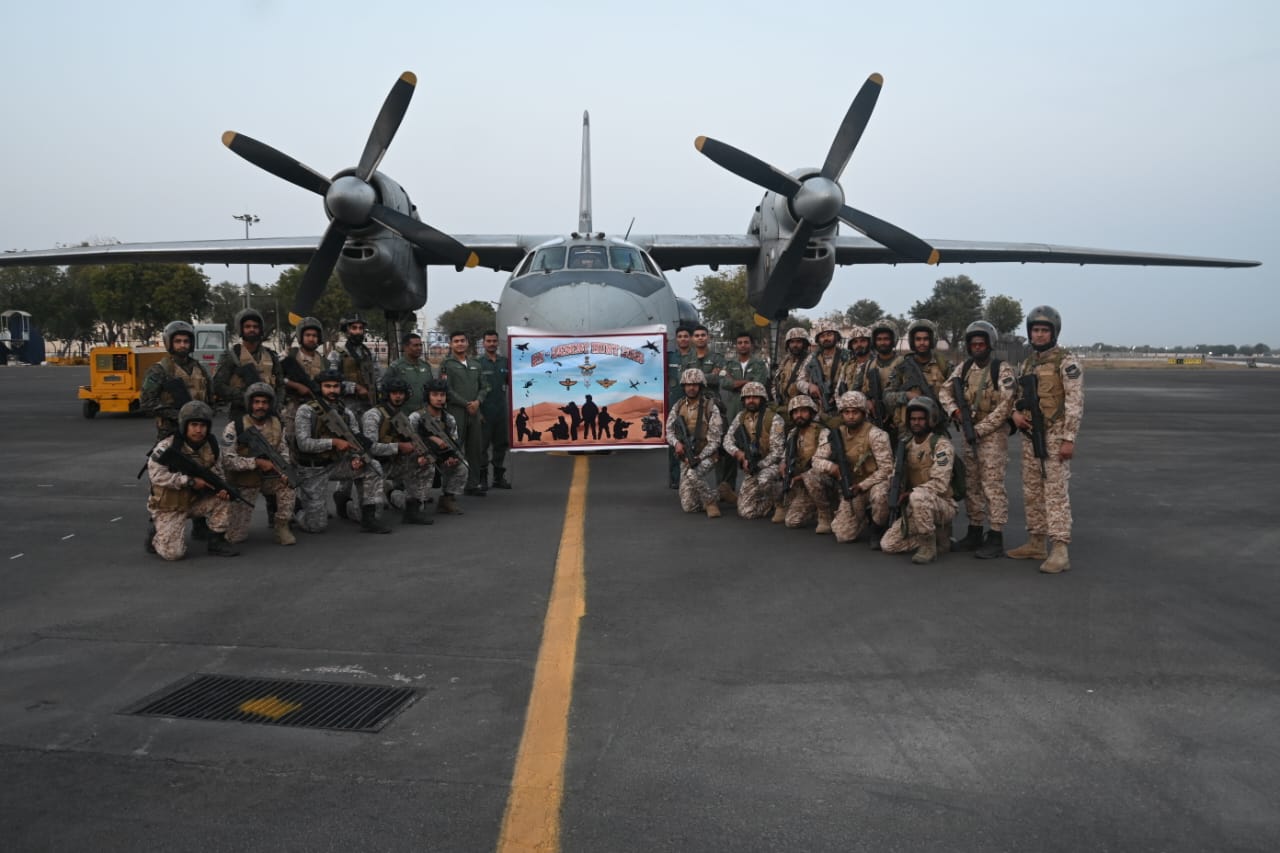
- 04 Mar 2025
In News:
Exercise Desert Hunt 2025 was a high-intensity Tri-Service Special Forces military drill conducted by the Indian Air Force at Air Force Station Jodhpur, Rajasthan, from 24 to 28 February 2025.
Participating Forces
- Indian Army: Para (Special Forces)
- Indian Navy: Marine Commandos (MARCOS)
- Indian Air Force: Garud Special Forces
Objective
- To enhance interoperability, coordination, and operational synergy among the Special Forces of the three services.
- To ensure swift and effective responses to emerging security threats through joint operations.
Key Activities
- Airborne insertion and combat free-fall
- Precision strikes and counter-terrorism drills
- Hostage rescue operations
- Urban warfare simulations
- Validation of joint operational doctrines under realistic combat conditions
Significance
- Strengthens tri-service integration and fosters inter-service cooperation.
- Reinforces the commitment of the Indian Armed Forces to national security.
- Provides a platform for doctrinal validation and operational readiness.
Bond Central
- 04 Mar 2025
In News:
The Securities and Exchange Board of India (SEBI) has launched Bond Central, a centralized and authentic information portal for corporate bonds in India. The initiative aims to enhance transparency, standardize data, and enable informed decision-making in the corporate debt market.
About Bond Central
- Launched by: SEBI (Securities and Exchange Board of India)
- Developed by: Online Bond Platform Providers Association (OBPP Association) in collaboration with Market Infrastructure Institutions (MIIs)—including stock exchanges and depositories
- Operated by: OBPP Association (a not-for-profit entity)
- Accessibility: Free and open to the public
- Purpose: To serve as a centralized, authentic source of information on corporate bonds issued in India
Key Features of Bond Central
- Unified Listings:
- Offers a comprehensive view of corporate bonds across all exchanges and issuers.
- Enhances transparency by allowing investors to compare bond data seamlessly.
- Price Comparison Tool:Enables investors to compare corporate bond prices with Government Securities (G-Secs) and other fixed-income indices, supporting better investment decisions.
- Investor-Centric Information:
- Provides access to risk assessments, disclosures, and corporate bond documentation.
- Helps investors effectively evaluate and compare investment opportunities.
- Standardization & Transparency:
- Standardizes corporate bond-related data to reduce information asymmetry.
- Builds trust in the bond market by ensuring consistency and reliability of information.
Significance for the Market
- Promotes Transparency: Makes vital market data openly accessible.
- Empowers Investors: Facilitates research-based and informed investment decisions.
- Strengthens Market Infrastructure: Aligns with SEBI’s goal of improving market efficiency and trust.
Current Status
- Phase 1 of Bond Central is live as of early 2025.
- More features are to be added progressively based on stakeholder feedback.
Why Mars is Red?

- 04 Mar 2025
In News:
Mars, often called the Red Planet, owes its distinctive hue to the iron-rich mineral ferrihydrite, according to a recent multi-agency study published in Nature Communications. This research offers significant insights into Mars’ ancient climate, the possibility of past water, and the planet’s habitability.
Key Discoveries:
- Primary Cause of Red Color:
- Ferrihydrite, a water-formed iron oxide, has been identified as the main source of Mars’ red dust.
- Previously, hematite—an iron oxide that forms in dry conditions—was believed responsible. The new evidence suggests cooler, water-rich conditions prevailed when ferrihydrite formed.
- Martian dust, dispersed globally by winds, contains ferrihydrite, giving Mars its iconic red appearance.
- Significance of Ferrihydrite:
- It forms only in the presence of liquid water and oxygen, implying that ancient Mars had a more temperate and moist environment.
- Hydrogen bound to ferrihydrite suggests past interactions between water and iron.
- Methodology:
- The study used data from NASA and ESA missions, including:
- Mars Reconnaissance Orbiter
- Mars Express
- Trace Gas Orbiter
- Ground-level data from rovers like Perseverance, Curiosity, and Opportunity
- Lab simulations recreated Martian conditions to study how ferrihydrite interacts with light and other minerals.
- The study used data from NASA and ESA missions, including:
Role of NASA’s Perseverance Rover:
- Launched in 2020, landed in 2021, Perseverance is collecting soil and rock samples.
- These samples will help validate the presence of ferrihydrite and the climatic conditions required for its formation.
Climatic Evolution of Mars:
- Mars once likely supported liquid water and a mild climate, possibly suitable for life.
- Over billions of years, the solar wind stripped away its atmosphere due to the absence of a strong magnetic field.
- This led to a transition to today's cold, dry, and barren landscape.
Facts about Mars:
- Position: 4th planet from the Sun
- Size: Radius ~3,390 km (~half of Earth’s)
- Moons: 2 – Phobos and Deimos (likely captured asteroids)
- Day (Sol): 24.6 hours
- Year: 687 Earth days
- Tilt: 25° (similar to Earth’s 23.4° → seasonal changes)
- Temperature Range: +20°C to -153°C
- Surface Features:
- Olympus Mons: Largest volcano in the solar system
- Valles Marineris: Giant canyon system, 10x longer than Grand Canyon
- Atmosphere: Thin, mostly CO?; lacks global magnetic field
- Dust Storms: Frequent and planet-wide, lasting months
Key Mars Missions:
- NASA: Perseverance, Curiosity, Spirit, Opportunity
- India: Mars Orbiter Mission (Mangalyaan)
- UAE: Hope Mission
- China: Tianwen-1
State of India’s Digital Economy Report 2025
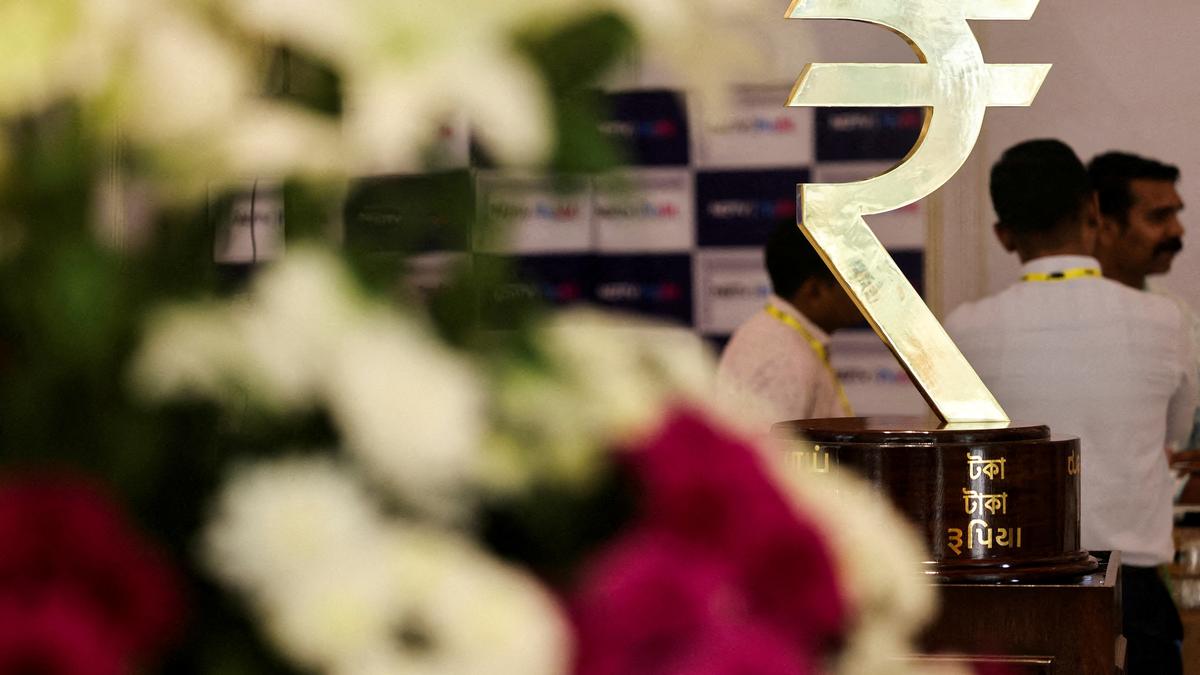
- 04 Mar 2025
In News:
The Indian digital economy is growing twice as fast as the overall economy and is projected to contribute 20% of India’s GDP by 2029, according to the State of India’s Digital Economy (SIDE) 2025 Report released by the Indian Council for Research on International Economic Relations (ICRIER) and its Prosus Centre for Internet and Digital Economy (CIDE).
Key Highlights:
- Global Standing:
- India is the 3rd largest economy globally.
- However, it ranks only 28th in digital user spending, reflecting a significant per capita digital adoption gap.
- In terms of a combined ranking of economic size and digital user economy, India stands 8th globally.
- CHIPS Framework for Digitalisation:The report uses the CHIPS framework to assess digital development:
- Connect: Internet access, affordability, and quality.
- Harness: Usage intensity, fintech adoption.
- Innovate: Start-up ecosystem, AI readiness.
- Protect: Cybersecurity and digital rights.
- Sustain: Green energy investments in the digital sector.
Strengths:
- Harnessing Digital Potential:
- India performs strongly in ICT service exports.
- The Indian IT sector has the third-highest global market capitalisation, after the U.S. and China.
- High levels of fintech usage and a robust start-up ecosystem contribute to digital growth.
- Digital Growth Rate:
- The digital economy is expanding at twice the pace of the broader economy.
Challenges:
- Low Per Capita Spending:Despite high internet penetration, digital service usage and spending are low, particularly among the average user.
- Regional Digital Divide:Southern and Western states are significantly ahead in digital adoption compared to Northern and Eastern states, pointing to the need for region-specific policy support.
- Weakness in Emerging Technologies:
- India ranks 11th in AI research and 16th in AI infrastructure.
- It lags behind countries like the U.S., China, Singapore, South Korea, and the Netherlands in AI and advanced tech innovation.
- Adoption of Consumer IoT and the metaverse remains well below global medians.
Way Forward:
To bridge the digital usage gap and fully harness the potential of the digital economy:
- Policies must focus on increasing affordability, especially in under-served regions.
- There is a need to strengthen AI infrastructure and research.
- Investment in emerging technologies, decentralised finance, and digital skilling is vital.
- A targeted approach to address regional disparities will ensure inclusive digital growth.
HeroRATS and the Future of Tuberculosis Detection
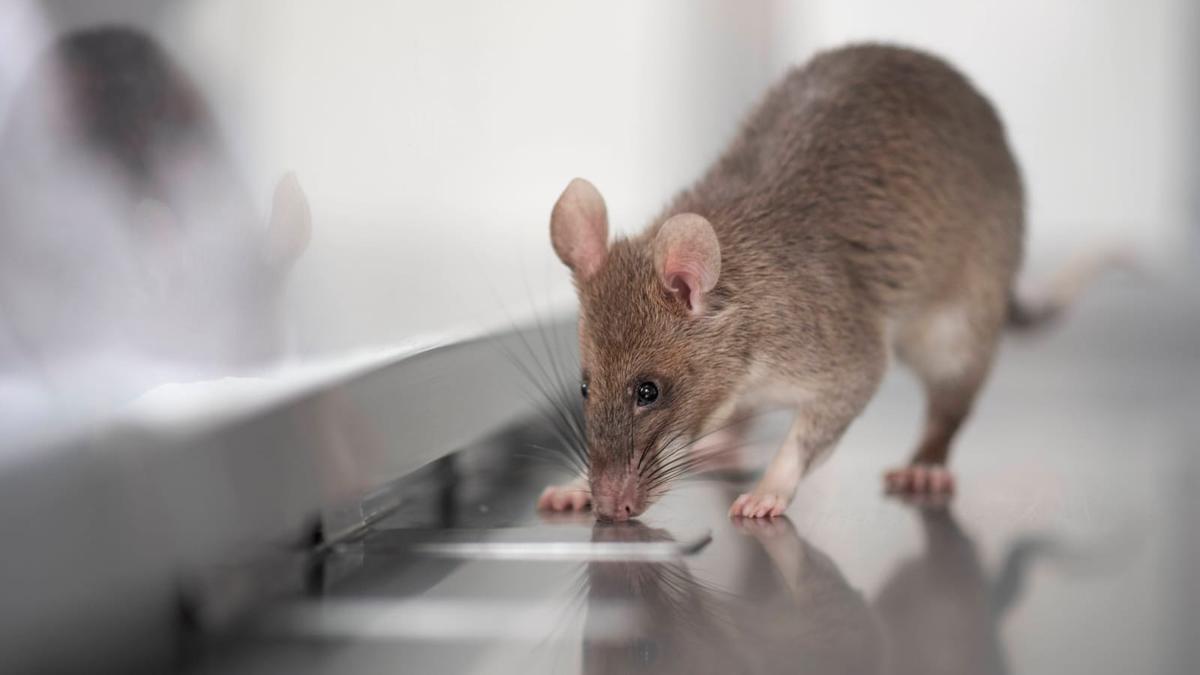
- 04 Mar 2025
In News:
Tuberculosis (TB) remains one of the deadliest infectious diseases globally, with over 10 million new cases annually. India carries the highest TB burden, accounting for about 28% of global cases and recording nearly five lakh TB-related deaths each year—roughly one death every minute. Despite progress under the National Tuberculosis Elimination Programme (NTEP), which aims to eliminate TB by 2025 (ahead of the global 2030 target), early and accurate diagnosis remains a major hurdle, especially in children, low bacillary load cases, and underserved regions.
A Novel Solution: HeroRATS in TB Diagnosis
In a groundbreaking initiative, APOPO, a Tanzanian non-profit, has trained African giant pouched rats (HeroRATS) to detect TB by sniffing sputum samples. These rats have highly sensitive olfactory receptors, enabling them to detect TB cases that conventional diagnostics often miss.
Key Features of HeroRATS:
- Can screen 100 samples in 20 minutes, compared to 3–4 days by sputum-smear microscopy.
- Trained through operant conditioning, rewarded with food after accurate detection.
- Detect twice as many TB cases in children and six times more in low-bacillary-load patients than traditional methods.
- Confirmatory tests: Ziehl-Neelsen and fluorescent microscopy.
A 2023 study involving over 35,000 patients in Tanzania showed that HeroRATS detected over 2,000 additional TB cases, particularly among smear- or Xpert-negative patients. The method offers a fast, cost-effective, and scalable secondary diagnostic tool.
Relevance to India
With India facing challenges like poor health infrastructure in rural areas and reluctance to seek re-testing after a negative result, integrating HeroRATS into the NTEP could boost case detection. Experts suggest a phased rollout in high-burden states like Maharashtra and West Bengal. The Central TB Division’s collaboration with APOPO could help accelerate TB diagnosis and reduce transmission.
About Tuberculosis
- Cause: Mycobacterium tuberculosis, mainly affects the lungs, spread via airborne droplets.
- Prevalence: One-fourth of the global population is infected; only 5–10% show symptoms.
- Risk Factors: Weakened immunity, malnutrition, diabetes, tobacco and alcohol use.
- Diagnosis: WHO recommends rapid molecular tests like Xpert MTB/RIF Ultra.
- Prevention: BCG vaccine at birth.
- Treatment: Standard 4–6 month antibiotic course.
- Drug-Resistant TB:
- MDR-TB: Resistant to isoniazid and rifampicin.
- XDR-TB: Resistant to multiple drug classes, harder to treat.
- TB-HIV Link: HIV patients are 16 times more likely to develop TB.
Bio-detection Beyond Rats: Macrosmatic Species in Medicine
Several animals with heightened olfactory senses are being used in disease detection:
- Dogs: Detect Parkinson’s, cancers, and diabetes using their 125–300 million olfactory receptors and Jacobson’s organ.
- Ants: Trained to detect cancer cells within three days using chemical signals.
- Honeybees: Can differentiate between types of lung cancer with 88% accuracy using synthetic biomarkers.
MISHTI Scheme
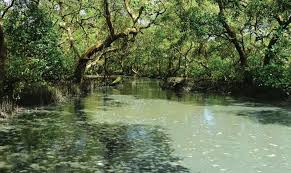
- 03 Mar 2025
In News:
Gujarat has emerged as the national leader in mangrove afforestation, covering 19,020 hectares in just two years under the Centre’s ‘MISHTI’ scheme.
Key Highlights:
- The Mangrove Initiative for Shoreline Habitats and Tangible Incomes (MISHTI) scheme was launched in 2023 under the Union Budget for 2023-24.
- The scheme aims to restore degraded mangrove ecosystems and increase India’s mangrove cover, enhancing coastal resilience while fostering sustainable livelihoods for coastal communities.
- Implemented from 2023 to 2028, the scheme is funded through various channels, including the CAMPA Fund (Compensatory Afforestation Fund Management and Planning Authority), MGNREGS (Mahatma Gandhi National Rural Employment Guarantee Scheme), and other governmental and private funding sources.
- The initiative also supports India’s participation in the global Mangrove Alliance for Climate (MAC) launched at COP27.
Key Objectives of MISHTI
- Ecological Restoration: To restore degraded mangrove ecosystems and expand mangrove cover across coastal areas.
- Coastal Resilience: To strengthen coastal resilience against climate change, such as coastal erosion and rising sea levels.
- Livelihood Generation: To promote ecotourism, sustainable livelihoods, and fishing opportunities for coastal communities.
- Climate Change Mitigation: The scheme plays a crucial role in protecting shorelines from storms, supporting India's commitments under the Paris Agreement and the UN Sustainable Development Goals (SDGs).
Gujarat’s Role in MISHTI Scheme
- Gujarat has emerged as the national leader in mangrove afforestation under the MISHTI scheme, planting over 19,000 hectares of mangroves in just two years.
- The state is spearheading the mangrove expansion efforts, with its coastline covering diverse ecosystems such as mangroves, coral reefs, and seagrasses.
- Gujarat has surpassed the Central Government’s target of planting 540 sq. km of mangroves in five years, completing plantation across 190 sq. km in the initial two years of the scheme.
Mangrove Distribution in Gujarat
- Gujarat's mangrove cover is distributed strategically across different coastal regions:
- Kutch: 799 sq. km, including the Gulf of Kutch, home to the Marine National Park and Wildlife Sanctuary.
- Other Coastal Districts: Jamnagar, Rajkot (Morbi), Porbandar, DevbhoomiDwarka (236 sq. km).
- Central and Southern Belt: Includes Bhavnagar, Ahmedabad, Anand, Bharuch, Surat, Navsari, and Valsad, covering 134 sq. km, with important areas like the Gulf of Khambhat and Dumas-Ubhrat.
- Saurashtra Region: Amreli, Junagadh, and Gir-Somnath maintain 6 sq. km of mangrove cover.
Significance of Mangroves
- Erosion Prevention: Mangroves act as a natural barrier, protecting coastal regions from erosion caused by waves and storms.
- Biodiversity Support: They provide vital breeding grounds for fish and other marine species, supporting coastal livelihoods.
- Climate Resilience: Mangroves help mitigate the effects of climate change by shielding vulnerable coastal communities from cyclones, reducing salinity, and preserving agricultural lands.
Global and National Mangrove Status
- Global Mangrove Distribution: Mangroves are found in tropical and subtropical regions worldwide, providing critical ecosystem services.
- India’s Mangrove Cover: According to the India State of Forest Report 2023, India has a total mangrove cover of 4,991.68 km², which accounts for 15% of the country’s total geographical area. The MISHTI scheme plays a pivotal role in further expanding this cover.
Amir Khusrau

- 03 Mar 2025
In News:
In his address to the 25th edition of Jahan-e-Khusrau at New Delhi’s Sunder Nursery, Prime Minister Narendra Modi described the annual music festival that commemorates the Sufi poet-musician Amir Khusrau as imbued with the “fragrance of the soil of Hindustan”.
Introduction
- Amir Khusrau, a 13th-century poet, musician, and scholar, is a prominent figure in India’s cultural history.
- Known as Tuti-yi-Hind (the Parrot of India), Khusrau’s contributions spanned literature, music, and the Sufi spiritual tradition.
- Revered for his role in shaping India’s syncretic culture, blending Persian, Turkic, and Indian elements.
Early Life and Background
- Born in 1253 in Patiyali, Uttar Pradesh, to a Turkic father and Indian Muslim mother.
- His family migrated to India due to Mongol invasions of Transoxiana.
- Grew up under the patronage of the Delhi Sultanate, serving five rulers: MuizuddinQaiqabad, JalaluddinKhalji, AlauddinKhalji, Qutbuddin Mubarak Shah, and GhiyasuddinTughlaq.
Literary Contributions
- Wrote in Persian and Hindavi, blending Turkic, Persian, and Indian traditions.
- Contributed significantly to the development of Hindavi, the precursor to modern Hindi and Urdu.
- Works include Divans (poetry collections), Mathnawis (narrative poems), and treatises.
- Advocated for Hindu-Muslim unity, promoting syncretic culture (Ganga-JamuniTehzeeb).
- Known for writing riddles, proverbs, and playful verses, which made literature accessible to the common people.
- Praised Hindu philosophical thought in his works, such as MasnaviNuhSiphir.
Musical Contributions
- Credited with creating several ragas, developing khayal (a classical Hindustani music form), and tarana (rhythmic vocal composition).
- Played a significant role in popularizing qawwali, a devotional Sufi music genre, by blending Persian, Arabic, and Indian musical traditions.
- Believed to have invented the sitar and tabla, though evidence is debated.
- Famous qawwalis include ChhaapTilak, Zehal-e-Maskeen, and Sakal Ban PhoolRahiSarson.
Role in the Delhi Sultanate
- Served as a court poet for at least five Delhi Sultans over five decades, a testament to his literary excellence.
- His compositions were vital in enhancing the Sultan’s political and cultural legitimacy.
- Sultan JalaluddinKhalji bestowed upon him the title Amir in recognition of his contributions to poetry.
Spiritual and Sufi Influence
- A devoted disciple of the Chishti Sufi saint NizamuddinAuliya, whose teachings on love and devotion to God deeply influenced Khusrau’s poetry and music.
- Balanced his role as a court poet with devotion to the Sufi order, bridging the worlds of royal courts and spiritual practices.
- His deep spiritual connection to NizamuddinAuliya is immortalized by their shared burial site in Delhi.
Sufism in India
- Sufism is the mystical and spiritual dimension of Islam, emphasizing love, devotion, and inner purification.
- Sufism emerged as a reaction to the rigidity of institutionalized religion and developed alongside India’s Bhakti movement.
- Key Sufi Orders in India:
- Chishti Order: The most influential in India, founded by KhwajaMoinuddin Chishti, focusing on love, devotion, and harmony.
- Suhrawardi Order: Focused on combining religious knowledge with mysticism.
- Naqshbandi Order: Opposed innovations like musical recitals and pilgrimages.
- Rishi Order: Based in Kashmir, drawing from the Shaivite bhakti tradition.
Impact of Sufism in India
- Sufism promoted religious tolerance, social reform, and a deep connection to spirituality.
- It attracted marginalized communities and weakened caste hierarchies.
- Sufi shrines and dargahs became pilgrimage sites for spiritual blessings.
- Influenced Indian music (especially qawwali) and literature, with poets like Bulleh Shah and Sultan Bahu.
- Promoted Sulh-e-Kul (peace with all), a concept that influenced Akbar’s religious tolerance policies.
Khusrau’s Lasting Legacy
- Amir Khusrau’s influence extends across literature, music, and spirituality in India.
- His poetry and music are celebrated today in both sacred and secular contexts.
- His works laid the foundation for the development of Urdu and Hindi literature.
- Khusrau’s teachings on Hindu-Muslim unity and cultural synthesis remain relevant in contemporary India.
Agritourism in Himachal Pradesh

- 03 Mar 2025
In News:
With a public debt exceeding ?1 lakh crore, Himachal Pradesh (HP) is actively exploring sustainable and innovative ways to boost its economy. Tourism contributes around 7% to the state's GDP, and the state is now integrating agriculture with tourism through agritourism to enhance rural livelihoods and extend tourist engagement.
What is Agritourism?
Agritourism is a form of tourism where visitors are engaged in agricultural activities such as farm stays, crop tours, and interactive farming experiences. It provides farmers with additional income, promotes sustainable tourism, and preserves agricultural and cultural heritage.
Opportunities and Features in Himachal Pradesh
Crop and Farm-Based Tourism
- Tulip farming in Kangra has already attracted tourist interest.
- Scope for cultivation of high-value crops like saffron and Himalayan medicinal herbs.
- Promotion of nutraceutical farming to tap into the growing demand for preventive health-based tourism.
Educational Tourism
- Farm visits can be organized for school and college students to raise awareness about food systems and sustainability.
- Farmers can charge nominal fees, benefiting financially while educating the younger generation.
Cultural and Experiential Engagement
- Local youth can be involved in storytelling, showcasing unique farming practices and regional traditions.
- Farm stays, panchayat-level fairs, and cultural activities (folk music, traditional cuisine) can enrich tourist experiences.
Economic and Employment Benefits
- Diversifies farmer income beyond conventional crops like apples.
- Creates jobs for local guides, cooks, transport providers, and artisans, particularly empowering rural women and youth.
Market Integration
- Organizing crop fairs and displaying agricultural products in urban spaces (e.g., malls) can help secure pre-orders and boost local brands.
- Encourages direct farmer-consumer connections.
Environmental and Social Impact
- Promotes organic farming, eco-friendly practices, and water conservation.
- Builds social capital by fostering urban-rural understanding and collaboration.
- Requires visitor sensitization and capacity building among locals to ensure respectful, responsible tourism.
Learning from Other States
- Maharashtra: First state to promote agritourism (Agro-Tourism Development Corporation, 2005); successful models include Baramati's pilot farm and Nashik’s vineyards.
- Kerala: Agro-Tourism Network for spice cultivation experiences.
- Sikkim: Organic farming tourism in the first organic state of India.
- Punjab, Rajasthan, Gujarat, Bihar, NE States: Promote local heritage, farming traditions, and eco-tourism (e.g., Ziro Valley’s wet rice farming, Amul’s dairy tourism).
Policy and Government Support
- Swadesh Darshan Scheme: Develops thematic rural and tribal tourism circuits.
- DekhoApnaDesh: Encourages domestic tourism in lesser-known destinations.
- PMJUGA: Focus on tribal homestays and livelihood promotion.
- National Strategy for Promotion of Rural Homestays (2022): Supports agritourism under Atmanirbhar Bharat.
- Agriculture Infrastructure Fund: Helps build infrastructure and marketing support for farm-based tourism.
Way Forward for Himachal Pradesh
- Develop a dedicated agritourism policy, like Goa’s, focusing on farm diversification and long-term returns.
- Promote public-private partnerships (PPP) for integrated agritourism models in each district.
- Leverage the nutraceutical potential of Himalayan herbs to attract health-conscious visitors.
- Institutionalize farm festivals, crop exhibitions, and story-driven agritourism to diversify Himachal’s tourism landscape.
Naval Anti-Ship Missile – Short Range (NASM-SR)
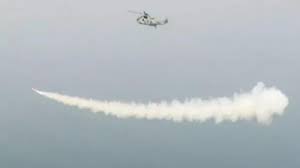
- 03 Mar 2025
In News:
The Defence Research and Development Organisation (DRDO) and the Indian Navy successfully conducted flight trials of the indigenous Naval Anti-Ship Missile – Short Range (NASM-SR) with a ‘Man-in-Loop’ capability from a Seaking 42B naval helicopter at the Integrated Test Range (ITR), Chandipur.
Key Features and Capabilities:
- Man-in-Loop Functionality:
- Provides real-time human intervention during flight.
- Enables in-flight retargeting by transmitting live seeker images to the pilot through a high-bandwidth two-way data link.
- Offers tactical flexibility in selecting and engaging specific targets among multiple options.
- Guidance and Navigation:
- Launched in Bearing-Only Lock-On After Launch (BOLOAL) mode.
- Equipped with an Indigenous Imaging Infra-Red (IIR) Seeker for terminal phase guidance.
- Uses an Indigenous Fiber Optic Gyroscope-based Inertial Navigation System (INS) and a Radio Altimeter for accurate mid-course and low-altitude navigation.
- Design and Control:
- Features Electro-Mechanical Actuators and Jet Vane Control for enhanced maneuverability.
- Integrated avionics module, thermal batteries, and PCB warhead support precise targeting and mission efficiency.
- Stealth and Strike Capability:
- Operates in Sea-Skimming Mode to evade radar detection.
- Demonstrated a direct hit on a small ship target at its maximum range during trial.
- Propulsion:Powered by solid propulsion, featuring an in-line ejectable booster and long-burn sustainer.
Development and Significance:
- Jointly developed by DRDO and the Indian Navy.
- Key DRDO labs involved:
- Research Centre Imarat (RCI)
- Defence Research and Development Laboratory (DRDL)
- High Energy Materials Research Laboratory (HEMRL)
- Terminal Ballistics Research Laboratory (TBRL)
- Marks India’s capability in indigenous anti-ship missile systems with advanced features like man-in-loop control and high-precision targeting.
- Enhances India’s naval warfare and coastal defense capabilities, aligning with Atmanirbhar Bharat in defense manufacturing.
NASA’s Lunar Trailblazer and IM-2 Mission
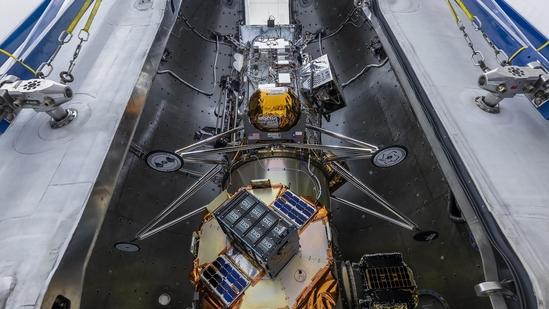
- 03 Mar 2025
In News:
NASA launched the Lunar Trailblazer spacecraft aboard a SpaceX Falcon 9 rocket from Kennedy Space Center to enhance understanding of water distribution on the Moon—crucial for long-term human exploration under the Artemis program.
Lunar Trailblazer Mission:
- Type: Small satellite (orbiter); part of NASA’s Small, Innovative Missions for Planetary Exploration (SIMPLEX) program.
- Developed by: NASA in collaboration with Lockheed Martin.
- Objective:
- Map and analyze the presence of water, particularly in permanently shadowed craters near the Moon’s poles.
- Study the lunar water cycle and evaluate water as a potential resource for future missions.
- Instruments:
- Lunar Thermal Mapper (LTM): Measures surface temperature to track water movement.
- High-resolution Volatiles and Minerals Moon Mapper (HVM3): Detects spectral signatures of water molecules.
- Timeline:
- Fuel-efficient trajectory to reach the Moon in 4 months.
- Mission duration: At least 2 years of mapping operations.
- Significance:
- Supports Artemis program objectives—long-term human presence on the Moon.
- Identifies potential water sources for drinking, fuel, and oxygen.
- Enhances understanding of water on airless planetary bodies and may offer clues to Earth’s water origins.
IM-2 Mission and Intuitive Machines’ Lunar Lander:
- Landing Site:Mons Mouton, near the Moon’s south pole (landing scheduled for March 6).
- Under: NASA’s Commercial Lunar Payload Services (CLPS) and Artemis campaign.
Key Scientific Objectives and Instruments:
- Polar Resources Ice Mining Experiment-1 (PRIME-1):
- TRIDENT Drill: Extracts lunar soil samples.
- MSolo Spectrometer: Detects volatile compounds in samples (e.g., water vapor).
- Laser Retroreflector Array (LRA): Provides a precise, passive reference point for future orbiters using laser ranging.
- Micro Nova Hopper (“Grace”):
- Autonomous drone developed under NASA’s Tipping Point initiative.
- Capable of hopping into shadowed craters to collect and transmit data.
- Nokia Lunar Surface Communications System (LSCS):
- 4G/LTE system for high-definition video, telemetry, and command messaging.
- Supports inter-device connectivity between the lander, rover, and hopper.
Strategic Importance:
- Pioneers in-situ resource utilization (ISRU) demonstrations.
- Tests surface communications and autonomous mobility systems.
- Lays groundwork for sustainable human presence and commercial space infrastructure.
All-India Consumer Price Index for Agricultural and Rural Labourers

- 02 Mar 2025
In News:
The Labour Bureau, Ministry of Labour& Employment released the All-India Consumer Price Index (CPI) for Agricultural Labourers (CPI-AL) and Rural Labourers (CPI-RL) for January 2025.
Key Highlights:
- Inflation Rates:
- CPI-AL: 4.61%
- CPI-RL: 4.73%
- Marked a decline from January 2024, when rates were 7.52% (CPI-AL) and 7.37% (CPI-RL).
- Also lower than December 2024: 5.01% (CPI-AL) and 5.05% (CPI-RL), indicating easing rural inflation.
- Index Levels:
- CPI-AL: 1316 (down by 4 points from 1320 in December 2024)
- CPI-RL: 1328 (down by 3 points from 1331 in December 2024)
Group-wise Index Comparison (Dec 2024 vs Jan 2025):
Group CPI-AL (Dec → Jan) CPI-RL (Dec → Jan)
General Index 1320 → 1316 1331 → 1328
Food 1262 → 1255 1269 → 1261
Pan, Supari, etc. 2093 → 2103 2100 → 2111
Fuel & Light 1382 → 1390 1372 → 1380
Clothing, Bedding, Footwear 1329 → 1332 1392 → 1396
Miscellaneous 1376 → 1385 1377 → 1385
About CPI-AL and CPI-RL:
- CPI-AL: Measures cost-of-living changes for agricultural labourers; used for revising minimum wages in agriculture.
- CPI-RL: Captures cost-of-living changes for rural labourers (includes CPI-AL as a subset).
- Compiled monthly for 20 states and at the All-India level.
- Base Year: 1986–87=100 (used to measure price change over time).
Significance:
- Declining CPI reflects lower rural price pressure, beneficial for wage policy formulation, poverty analysis, and rural development planning.
Ultra-Conserved Elements (UCEs)
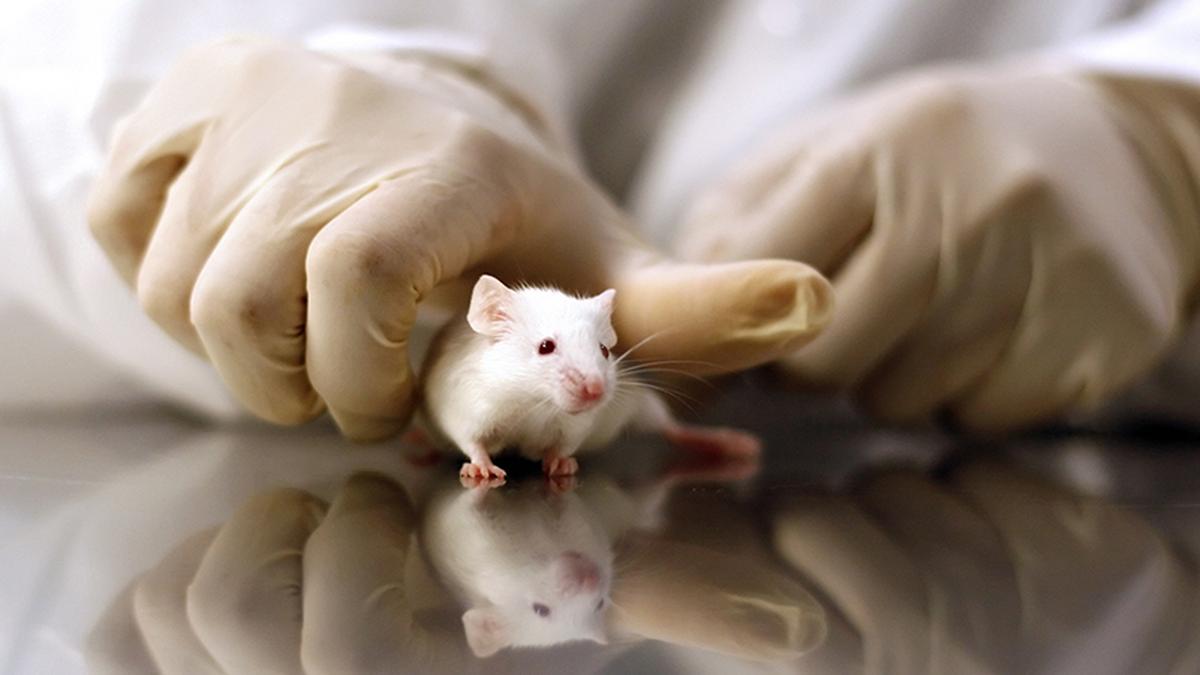
- 02 Mar 2025
In News:
A recent study on the Tra2b gene in mice has revealed a potential reason why certain segments of the genome called Ultra-Conserved Elements (UCEs) have remained unchanged for over 80 million years across species like humans, mice, rats, chickens, and even fish.
What are Ultra-Conserved Elements (UCEs)?
- Definition:DNA sequences at least 200 base pairs long that have remained perfectly identical across diverse species for tens of millions of years.
- Number in Human Genome:Around 500 UCEs have been identified in the human genome.
- Location:Found in both coding regions (genes) and non-coding regulatory regions like enhancers and silencers.
- Species Overlap:Identical UCEs are shared by humans, mice, rats, chickens, and fish, reflecting their evolutionary conservation.
Key Findings from the Tra2b Gene Study
- Research Insight:A UCE embedded in the first intron of the Tra2b gene acts as a “poison exon” to regulate production of the Tra2β protein, which is involved in RNA splicing.
- Mechanism:
- When Tra2β levels rise, the UCE is included as an extra exon in the mRNA.
- This exon contains multiple stop codons, halting protein synthesis.
- The mRNA is then degraded, preventing excess Tra2β protein.
- Experimental Result:
- Deleting this UCE in mouse sperm-producing cells led to overproduction of Tra2β, causing cell death and infertility.
- This implies that any mutation in the UCE that disrupts its function would lead to infertility and thus prevent its transmission, explaining its evolutionary stability.
Significance of UCEs
- Evolutionary Importance:Their intolerance to mutation suggests they are critical for basic survival and reproductive success.
- Functional Role:
- Do not typically code for proteins.
- Regulate gene expression, often during early development, fertility, and immune response.
- Act as enhancers, silencers, or splice regulators (as in the case of poison exons).
- Medical Relevance:
- Help understand gene regulation and disease mechanisms.
- Their conservation across species makes them valuable for comparative genomics and biomedical research.
- Mice are used as model organisms due to ~85% genetic similarity with humans.
Aditya-L1 Mission
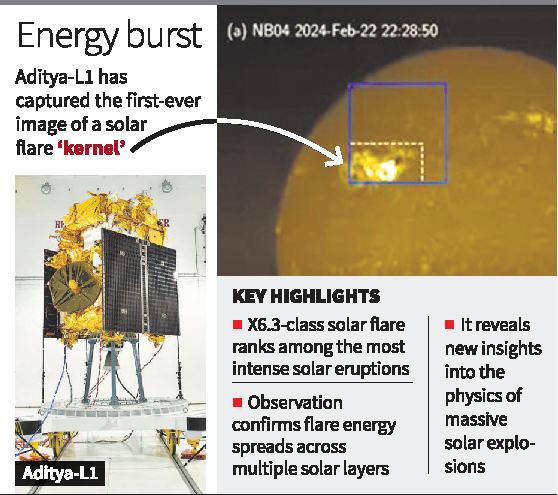
- 02 Mar 2025
In News:
ISRO’s Aditya-L1 mission has made a significant breakthrough by capturing the first-ever image of a solar flare 'kernel' using the Solar Ultraviolet Imaging Telescope (SUIT) payload.
Key Highlights:
- Captured Phenomenon:
- An X6.3-class solar flare (among the most intense categories) was observed on February 22, 2024.
- SUIT detected localized brightening in the Near Ultraviolet (NUV) wavelength (200–400 nm), a range never before observed in such detail.
- Scientific Significance:
- Observation occurred in the lower solar atmosphere (photosphere and chromosphere).
- Confirmed energy transmission from the flare through multiple solar atmospheric layers.
- Demonstrated a direct link between flare energy deposition and plasma temperature increase in the solar corona.
- Validated longstanding theories while offering new insights into solar flare physics.
About Aditya-L1 Mission:
- Launch Date: September 2, 2023
- Orbit: Placed in a halo orbit around the first Earth-Sun Lagrange Point (L1) on January 6, 2024.
- Objective: Study solar activities and their impact on space weather.
- Significance: India’s first space-based solar observatory, and ISRO’s second astronomy mission after AstroSat (2015).
Solar Flares – Quick Facts:
- Solar flares are massive explosions on the Sun's surface that release energy, light, and high-speed charged particles.
- Often associated with Coronal Mass Ejections (CMEs) that can affect Earth's magnetosphere and satellites.
- Classification: A, B, C, M, and X — with X-class being the most powerful, increasing tenfold in energy per class.
Amazon’s Ocelot Quantum Chip
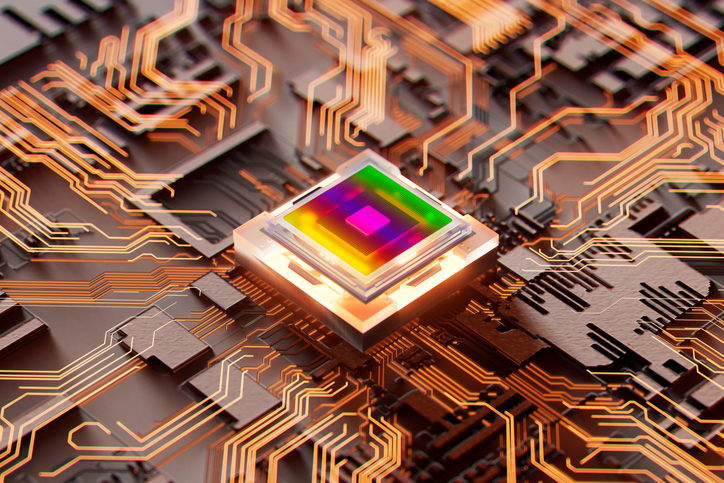
- 02 Mar 2025
In News:
Amazon Web Services (AWS) has unveiled its first in-house quantum computing chip, Ocelot, aimed at significantly reducing the development time for commercially viable quantum computers.
Key Highlights:
- Developed By: AWS Center for Quantum Computing at the California Institute of Technology.
- Objective: To accelerate the development of scalable and error-resilient quantum computers using novel architecture.
What is Ocelot?
- Type: Prototype quantum computing chip.
- Technology: Utilizes “cat” qubits—named after Schrödinger’s cat paradox—to suppress certain types of quantum errors intrinsically.
- Efficiency: Achieves 1 logical qubit using only 9 physical qubits, compared to the industry norm of ~1 million physical qubits for similar output.
Technical Features:
- Chip Design:
- Dual silicon microchips (~1 sq. cm each) stacked together.
- 14 core components:
- 5 cat qubits (for data storage),
- 5 buffer circuits (for qubit stabilization),
- 4 ancillary qubits (for error detection).
- Material Used: Standard chip fabrication techniques with tantalum.
Significance:
- Developmental Impact:
- Expected to reduce quantum computer development timelines by 5–10 years.
- Enables building practical quantum systems with around 100,000 qubits instead of the previously assumed 1 million.
- Potential Applications:
- Advanced drug discovery,
- New material development (e.g., batteries),
- Financial modeling, and
- Climate simulations.
- Strategic Implication: Strengthens Amazon’s position in the global quantum computing race alongside rivals like Google, Microsoft, and PsiQuantum.
Understanding Quantum Chips:
- Qubits vs Classical Bits:
- Classical bits = 0 or 1;
- Qubits = 0 and 1 simultaneously (superposition).
- Entanglement:Interlinked qubits can influence each other instantly, enhancing computational capacity.
- Quantum Gates:Operations are performed via gates like Hadamard, CNOT, and Pauli.
- Error Correction:Quantum systems are fragile; Ocelot’s built-in cat qubit architecture enhances stability and reliability.
One Nation-One Port Initiative
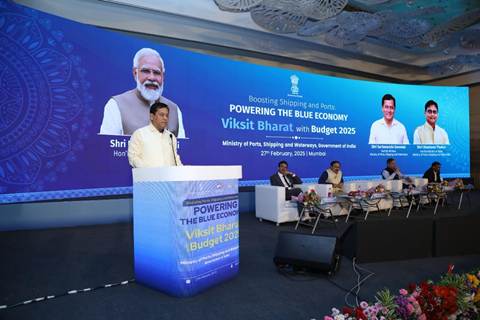
- 02 Mar 2025
In News:
The Ministry of Ports, Shipping and Waterways (MoPSW) has launched the ‘One Nation, One Port Process (ONOP)’, a transformative initiative aimed at standardizing port operations across India to improve efficiency, reduce costs, and bolster India’s position in global trade. This move aligns with PM Gati Shakti, the National Logistics Policy, and India’s ambition to become a leading maritime and logistics hub under Viksit Bharat@2047.
Key Components of the Maritime Reform Package:
1. One Nation, One Port Process (ONOP):
- Seeks uniform documentation and standardized customs procedures across all Indian ports.
- Reduced container operation documents by 33% (from 143 to 96) and bulk cargo documentation by 29% (from 150 to 106).
- Aims to eliminate procedural inconsistencies, boost ease of doing business, and cut logistics delays.
2. Sagar Ankalan – Logistics Port Performance Index (LPPI):
- Evaluates performance of major and non-major ports under Bulk (Dry & Liquid) and Container categories.
- Assesses indicators like cargo handling, turnaround time, berth idle time, and container dwell time.
- Encourages data-driven port benchmarking and fosters transparency in maritime logistics.
- Supports India’s improvement in the World Bank’s LPI (International Shipments) – from rank 44 to 22 in 2023.
3. MAITRI (Master Application for International Trade and Regulatory Interface):
- A digital platform using AI and Blockchain to automate trade clearances and enable Virtual Trade Corridors (VTC).
- Initial linkage with UAE, to expand towards BIMSTEC and ASEAN nations.
- Reduces bureaucratic redundancies, improves supply chain integration, and enhances trade resilience.
4. Bharat Ports Global Consortium:
- A collaborative body combining IPGL (operations), SDCL (finance), and IPRCL (infrastructure).
- Focuses on port development, global trade connectivity, and supporting the Make in India initiative.
- Strengthens India's presence in global logistics networks.
5. Financial and Policy Support:
- Launch of a ?25,000 crore Maritime Development Fund to facilitate long-term port and shipping investments.
- Shipbuilding Financial Assistance Policy 2.0 to aid Indian shipyards in competing globally.
- Customs duty exemptions on shipbuilding inputs extended for 10 years.
- Inclusion of large ships in the Infrastructure Harmonised Master List (HML) to ease access to funding.
6. Sustainability and Green Shipping:
- Launch of the National Centre of Excellence in Green Port and Shipping (NCoEGPS).
- Focus on carbon footprint reduction, cleaner fuels, and eco-friendly port operations.
7. Promotion and Maritime Diplomacy:
- Announcement of India Maritime Week (Oct 27–31, 2025) in Mumbai to showcase India’s Maritime Virasat (Heritage) and Vikaas (Development).
- Will host the 4th Global Maritime India Summit and the 2nd Sagarmanthan Dialogue, with representation from 100 countries and over 1 lakh delegates.
Strategic Significance:
- Aligns with Atmanirbhar Bharat, Blue Economy, and India-Middle East-Europe Economic Corridor (IMEEC).
- Boosts domestic manufacturing and export potential through better port infrastructure and trade facilitation.
- Reflects India’s push toward a digital, green, and globally competitive maritime sector.
Make the World Wear Khadi Campaign
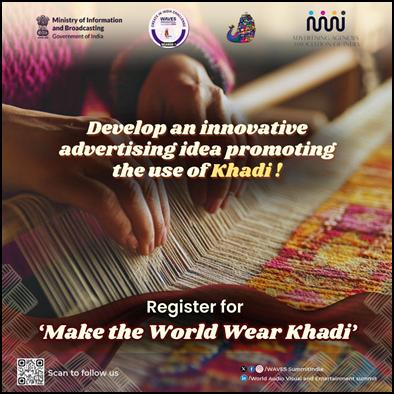
- 01 Mar 2025
In News:
The “Make the World Wear Khadi” campaign is a strategic initiative launched to globalize Khadi, India’s iconic hand-spun fabric, by integrating it with contemporary fashion trends. It is part of the inaugural World Audio Visual & Entertainment Summit (WAVES), scheduled from 1–4 May 2025at theJio World Convention Centre, Mumbai.
Key Highlights:
Organizers
- Advertising Agencies Association of India (AAAI)
- Ministry of Information and Broadcasting, Government of India
Objectives
- Elevate Khadi as a global, aspirational brand.
- Celebrate and modernize India's textile heritage.
- Engage creative professionals in branding and marketing of Khadi through various media.
- Showcase India’s soft power in the global Media & Entertainment (M&E) space.
Campaign Highlights
- Part of the broader Create in India Challenges under WAVES.
- Participants: Open to advertising professionals and freelancers globally.
- Format: Creative entries in digital, print, video, and experiential marketing.
- Total Registrations for Create in India Challenges: 73,000+
- Registrations for Khadi Challenge (as of Feb 15, 2025): 112
Khadi – Key Facts
- What is Khadi?
- A traditional Indian fabric made from hand-spun and hand-woven cotton, silk, or wool.
- Historical Significance:
- Promoted by Mahatma Gandhi during the freedom movement as a symbol of swadeshi, self-reliance, and economic independence.
- Key Characteristics:
- Hand-spun using a charkha (spinning wheel).
- Woven on traditional looms.
- Eco-friendly and sustainable, made from natural fibers.
- Supports rural employment and cottage industries.
WAVES Summit 2025 – Snapshot
- A flagship Media & Entertainment event with a hub-and-spoke model.
- Four thematic pillars:
- Broadcasting & Infotainment
- AVGC-XR (Animation, VFX, Gaming, Comics, Extended Reality)
- Digital Media & Innovation
- Films
- The Khadi campaign falls under the Broadcasting & Infotainment category.
Plastic Parks in India
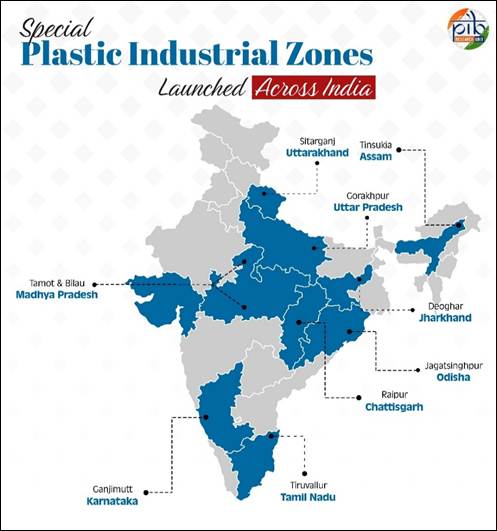
- 01 Mar 2025
In News:
The Department of Chemicals and Petro-Chemicals is implementing the Scheme for Setting up of Plastic Parks under the umbrella scheme of New Scheme of Petrochemicals, to support setting up need-based Plastic Parks, with requisite state-of-the-art infrastructure, enabling common facilities through cluster development approach, to consolidate the capacities of the domestic downstream plastic processing industry.
What is a Plastic Park?
- A Plastic Park is a dedicated industrial zone for plastic-related industries.
- Aims to synergize capacities of the plastic processing sector and promote investment, production, export, and employment.
- Encourages sustainable development through waste management and recycling.
Plastic Parks Scheme
- Implemented by the Department of Chemicals and Petro-Chemicals under the New Scheme of Petrochemicals.
- Financial Support: 50% of project cost, up to ?40 crore per park.
- Focus: Common infrastructure, cluster development, employment generation, and environmental sustainability.
Plastic Parks Approved (as of April 2025):
Location State Year Approved Grant Sanctioned (? crore) Amount Released (? crore)
Tamot Madhya Pradesh 2013 40.00 36.00
Jagatsinghpur Odisha 2013 40.00 36.00
Tinsukia Assam 2014 40.00 35.73
Bilaua Madhya Pradesh 2018 34.36 30.92
Deoghar Jharkhand 2018 33.67 30.30
Tiruvallur Tamil Nadu 2019 40.00 22.00
Sitarganj Uttarakhand 2020 33.93 30.51
Raipur Chhattisgarh 2021 21.04 11.57
Ganjimutt Karnataka 2022 31.38 6.28
Gorakhpur Uttar Pradesh 2022 34.79 19.13
Objectives
- Boost competitiveness, polymer absorption, and value addition.
- Support R&D-led growth and enhance exports.
- Promote eco-friendly practices like plastic recycling, effluent treatment, and hazardous waste management.
- Encourage cluster-based industrial growth.
Process of Setting up
- States submit proposals → In-principle approval by Scheme Steering Committee → Submission of DPR → Final approval.
- Implementation via Special Purpose Vehicles (SPVs) formed by states.
Other Government Measures
13 Centres of Excellence (CoEs) established at premier institutions (IITs, CSIR labs, CIPET) for:
- Sustainable polymers
- Bio-engineered polymer systems
- Advanced polymeric materials
- Wastewater management in petrochemical industries
Skill Development:
- CIPET offers short- and long-term training in plastic processing technology.
Sustainability Measures
- Extended Producer Responsibility (EPR) mandates recycling targets, use of recycled content.
- Hazardous Waste Management Rules enforce safe disposal practices.
- Ban on certain single-use plastics.
- Promotion of circular economy and biodegradable alternatives.
- Active engagement with WTO, UNEP, ISO for global compliance.
India in Global Plastic Trade
- 12th largest plastic exporter globally (World Bank, 2022).
- Exports increased from USD 8.2 million (2014) to USD 27 million (2022).
Prelims Facts to Remember
- Scheme launched under Department of Chemicals and Petrochemicals.
- Max central grant per park = ?40 crore.
- Plastic Park = cluster-based industrial zone for plastic processing industries.
- Gorakhpur (UP) &Ganjimutt (Karnataka) approved in 2022.
- India is actively integrating sustainability and innovation in the plastic sector.
National Science Day 2025
- 01 Mar 2025
In News:
National Science Day to be celebrated with theme ‘Empowering Indian Youth for Global Leadership in Science & Innovation for Viksit Bharat’.
Key Details:
- Observed On: February 28 annually
- Purpose: To commemorate the discovery of the Raman Effect by Sir C.V. Raman in 1928. The day highlights the importance of science and promotes scientific temper among the public.
- Theme 2025:“Empowering Indian Youth for Global Leadership in Science & Innovation for Viksit Bharat”
- This theme reflects the vision of building a developed India (Viksit Bharat) by nurturing youth-led scientific innovation and aligning with India’s S&T ambitions for 2047.
About Sir C.V. Raman and Raman Effect:
- Born: 7 November 1888, Tiruchirappalli, Tamil Nadu
- Major Contributions:
- Discovered the Raman Effect (1928), for which he received the Nobel Prize in Physics in 1930, becoming the first Asian Nobel Laureate in science.
- Founded: Indian Journal of Physics (1926), Indian Academy of Sciences (1934), Raman Research Institute (1948).
- First Indian Director of IISc, Bangalore (1933).
- Awarded Bharat Ratna in 1954.
Raman Effect:A phenomenon where light passing through a substance changes in wavelength due to interaction with molecular vibrations. This principle is used in Raman Spectroscopy, widely applied in material science, chemistry, forensics, and even nuclear waste analysis.
National Science Day – History & Celebrations:
- Established: 1986 by the Government of India
- First Observed: 1987
- Organisedby:National Council for Science & Technology Communication (NCSTC) under the Department of Science & Technology (DST).
- Celebrations include lectures, open labs, science fairs, and awareness drives across the country, especially for students.
Key Developments in Science & Technology (2024-25):
- Innovation & IP Rankings:
- 39th in Global Innovation Index 2024 (WIPO)
- 6th in Global IP Filings
- Major Initiatives:
- Anusandhan National Research Foundation (ANRF): Boosts R&D and supports innovation in EVs, materials, and emerging technologies.
- National Quantum Mission (NQM): ?6003.65 crore mission to advance quantum computing, communication, and sensing.
- National Supercomputing Mission (NSM):
- Deployed 33 supercomputers, capacity: 32 PetaFlops.
- Target: 77 PetaFlops using indigenous technology.
- Artificial Intelligence:
- BharatGen: India’s first multilingual, multimodal Large Language Model (LLM) for Generative AI.
- STEM Inclusivity:
- Programs like WISE-KIRAN support women in science.
- PM Early Career Research Grant nurtures young researchers.
- INSPIRE continues to attract school and college students to science careers.
- Geospatial & Climate Research:
- Expansion of spatial thinking programs in schools (116 schools across 7 states).
- Establishment of 4 Centres of Excellence for climate risk mapping to enhance disaster preparedness.
Cali Fund
- 01 Mar 2025
In News:
‘Cali Fund’ launched at CBD COP16 in Rome to boost biodiversity finance.
Key Details:
- Launched at: COP16 to the UN Convention on Biological Diversity (CBD), held in Rome in 2025.
- Purpose: The Cali Fund aims to promote the fair and equitable sharing of benefits arising from the use of Digital Sequence Information (DSI) on genetic resources, marking a major step towards fulfilling Goal C and Target 13 of the Kunming-Montreal Global Biodiversity Framework (KMGBF)—which targets halting and reversing biodiversity loss by 2030.
Key Features of the Cali Fund:
- Origin: It builds on the multilateral mechanism adopted during COP15 (2022) and was operationalised at COP16 (2025).
- Objective:Mobilise financial contributions from the private sector to support biodiversity conservation and implementation of National Biodiversity Strategies and Action Plans (NBSAPs).
- Hosted By: Multi-Partner Trust Fund Office (MPTFO).
- Managed By: United Nations Development Programme (UNDP) and United Nations Environment Programme (UNEP).
- Secretariat: Hosted by the Convention on Biological Diversity (CBD).
Funding Mechanism:
- Source of Contributions: Companies commercially utilisingDSI—genetic data from plants, animals, and microorganisms—especially in sectors like:
- Pharmaceuticals
- Cosmetics
- Agriculture and biotechnology
- Industrial biotech and AI-assisted research
- Exemptions: Academic institutions, public research bodies, and entities not reliant on DSI are exempt.
- Allocation:
- 50% of resources are earmarked for indigenous peoples and local communities, especially women and youth, recognising their key role in biodiversity protection.
Significance:
- Global First: First UN biodiversity fund to receive direct contributions from private companies.
- Support for Biodiversity Action Plans: Assists developing countries in implementing their KMGBF targets and NBSAPs.
- Boosts Scientific Research: Enhances capabilities for storing, using, and analysing DSI.
- Promotes Collective Action: Encourages industries benefiting from biodiversity to reinvest in its protection—ushering in a new era of biodiversity finance.
About Digital Sequence Information (DSI):
- Definition: Digitally stored genetic data from DNA, RNA, and proteins.
- Use Cases: Vital for research in health, food security, climate change, conservation, and bioeconomy.
- Governance: Discussed under CBD, WHO PIP Framework, UN Law of the Sea, and others.
NASA’s SPHEREx Telescope
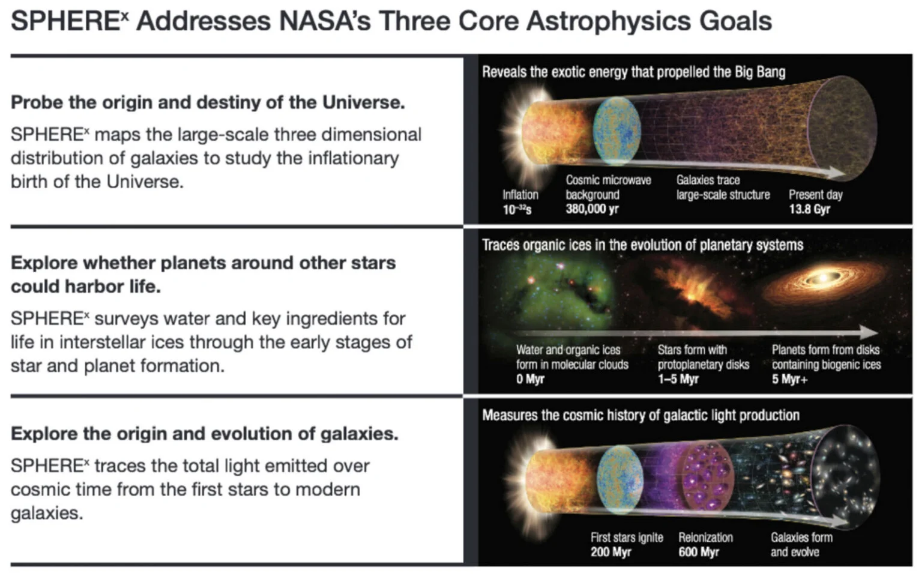
- 01 Mar 2025
In News:
NASA is set to launch the Spectro-Photometer for the History of the Universe, Epoch of Reionization, and Ices Explorer (SPHEREx) aboard a SpaceX Falcon 9 rocket from Vandenberg Space Force Base, California. The telescope is megaphone-shaped, infrared-based, and is designed for a 2-year mission to scan the entire sky in infrared and optical light.
Key Details:
Mission Objectives
- Cosmic Inflation: SPHEREx will investigate the phenomenon of cosmic inflation, the ultra-rapid expansion of the universe that occurred a fraction of a second after the Big Bang (~13.8 billion years ago). By mapping the 3D positions of nearly 450 million galaxies, the mission aims to refine theories about the universe’s earliest moments.
- Spectroscopic Mapping: It will divide light into 96–102 spectral bands, creating a 3D map of the sky. It will collect 8 million spectroscopic images, allowing the study of the composition and distribution of celestial objects on an unprecedented scale.
- Biogenic Molecules Detection: The telescope will identify life-forming (biogenic) molecules like water, carbon dioxide, carbon monoxide, and methanol in cold molecular clouds of the Milky Way. These icy particles are essential for understanding the chemical preconditions for life.
- Cosmic Glow & New Phenomena: SPHEREx will also measure the collective glow from intergalactic space, which could help uncover previously unknown cosmic events and structures.
Comparison with Other Telescopes
Unlike the James Webb Space Telescope (JWST) or the Hubble Space Telescope, which focus on high-resolution, narrow field observations, SPHEREx is designed to scan the entire sky. The full-sky mapping capability makes it a complementary tool for large-scale statistical cosmology.
Significance for Astronomy and Astrobiology
- It provides a comprehensive sky census of galaxies, stars, and asteroids (around 1 billion galaxies, 100 million stars, and 10,000 asteroids).
- By locating regions rich in life-bearing molecules, it enhances our understanding of how life-essential chemistry emerges in the galaxy.
- It lays the groundwork for future targeted studies of exoplanets and habitable environments in space.
Mount Fentale
- 28 Feb 2025
In News:
Mount Fentale, a stratovolcano located in Awash National Park in northern Ethiopia, has recently gained global attention due to its unprecedented release of massive methane plumes. This rare and unusual volcanic event, has raised significant concerns about its potential impacts on climate change and the necessity for better global methane tracking.
About Mount Fentale
Mount Fentale, standing 600 meters above the Rift Valley floor, is known for its elliptical caldera, approximately 6 km in diameter. The volcano's eruptions, historically infrequent, have typically involved the release of lava and ash.
The Methane "Burp" and Its Unusual Nature
What distinguishes this event from typical volcanic activity is the massive emission of methane—58 metric tonnes per hour. Volcanic eruptions are generally associated with carbon dioxide (CO?) and sulfur dioxide (SO?), not methane. Methane, however, is significantly more effective at trapping heat than CO?, being 28 times more potent over a 100-year period. The scale of the methane release is far greater than what is typically associated with volcanic activity, prompting scientific investigations into the cause and potential implications for the global climate.
The methane release is believed to result from deep magma movements that opened underground gas pockets, allowing the methane to escape through newly formed fissures. Unlike a surface eruption, which would involve molten lava, this "burp" suggests that magma at depth caused the gas to surface without the typical visual eruption.
Scientific and Environmental Concerns
Methane is the second-largest contributor to global warming, responsible for around 11% of total greenhouse gas emissions worldwide. Even short-term spikes in methane levels can have a significant impact on global temperature rise. This phenomenon underscores the urgency for enhanced global methane monitoring systems, particularly from natural sources like volcanic eruptions.
While Mount Fentale is not a frequent eruptor, the discovery of massive methane emissions from the volcano highlights the need for comprehensive tracking of both natural and human-driven sources of greenhouse gases. The event suggests that volcanic activity may be a more significant contributor to climate change than previously understood, particularly in the context of methane.
Recent Developments and Earthquake Activity
Following the methane release, Mount Fentale experienced a magnitude 6.0 earthquake the strongest to hit Ethiopia since 1989. This earthquake, likely associated with tectonic movements beneath the volcano, adds a layer of complexity to the ongoing geological activity in the region.
The volcano's stratovolcanic nature, characterized by steep sides built up by alternating layers of lava and pyroclastic material, makes it particularly prone to explosive events. Stratovolcanoes like Fentale are among the most active types of volcanoes on Earth, and their eruptions can have far-reaching environmental impacts.
Global Significance and the Role of Satellite Monitoring
The unexpected methane release from Mount Fentale is not just a local environmental concern but has global implications. As a powerful greenhouse gas, methane's release into the atmosphere accelerates global warming, making it a key target in climate change mitigation efforts. The event highlights the importance of satellite monitoring programs, like those operated by the European Space Agency’s Copernicus program, which detected thermal anomalies in January, and GHGSat, which later confirmed the methane emissions.
The U.S. "Gold Card" Visa

- 28 Feb 2025
In News:
In a significant shift from traditional immigration programs, U.S. President Donald Trump proposed a new immigration initiative—the “Gold Card”—intended to replace the existing EB-5 investor visa program. The Gold Card, requiring a hefty $5 million investment, offers wealthy foreign nationals a direct route to U.S. permanent residency and eventual citizenship, positioning it as a premium alternative to the existing Green Card and EB-5 programs.
Key Differences Between the Gold Card and Green Card
The Green Card remains the standard route to permanent U.S. residency, typically obtained through employment, family sponsorship, or asylum, and involves a detailed, multi-step application process. The EB-5 Investor Visa, introduced in 1990, allows foreign investors to gain U.S. residency by investing a minimum of $1.05 million (or $800,000 in economically distressed areas) in U.S. businesses, provided they create or preserve at least 10 American jobs. The EB-5 program, however, has faced criticism for fraud, misuse, and its association with high-profile real estate projects, including some linked to the Trump family.
The Gold Card, in contrast, offers a simplified and expedited process for wealthy investors to gain permanent residency, bypassing the job creation requirement of the EB-5. For a $5 million investment, foreign nationals can directly purchase their way into U.S. citizenship, bypassing many of the traditional barriers associated with U.S. immigration.
Benefits of the Gold Card Program
- Streamlined Immigration: Investors can gain U.S. residency without the need for job creation or business involvement, unlike the EB-5 program.
- Attracting Wealthy Investors: The program appeals to high-net-worth individuals who can contribute to the U.S. economy through luxury markets, real estate, and business investments.
- Faster Processing: With potentially fewer regulatory hurdles, the Gold Card is designed to have a quicker processing time compared to traditional immigration routes.
- Reduced Fraud Risks: The fixed high-cost nature of the Gold Card may reduce the misuse and fraud that plagued the EB-5 program, offering a more straightforward investment approach.
Potential Concerns and Criticisms
- Ethical and Political Issues: The Gold Card raises questions about "selling" U.S. citizenship, prioritizing wealth over merit, and potentially disadvantaging skilled professionals or individuals seeking to contribute to the U.S. economy.
- Risk of Financial Misuse: Investment-based immigration programs have been criticized for facilitating money laundering, foreign influence, and the movement of illicit capital.
- No Economic Contribution Requirement: Unlike the EB-5, which mandates job creation, the Gold Card does not require any direct investment in U.S. businesses or job creation, limiting its economic impact.
- Legislative and Legal Challenges: Immigration policies in the U.S. are subject to Congressional approval. The Gold Card proposal is likely to face opposition from both Democrats and some Republicans who may object to its perceived elitism or to the legal challenges it might face.
Comparison with Other Investment Visa Programs
The U.S. Gold Card is part of a broader global trend of "Golden Visa" programs, where countries offer residency or citizenship to foreign investors in exchange for significant financial contributions. For instance:
- Portugal: Offers residency for a €500,000 investment in economic development funds, with a pathway to citizenship after five years.
- UAE: Requires an AED 2 million investment for a 10-year residency.
- New Zealand: Offers relaxed requirements for wealthy investors to attract capital following the recession.
These programs, while controversial, aim to attract high-net-worth individuals who can contribute to local economies through investments in real estate, business ventures, or government funds.
India-UK Free Trade Agreement (FTA)

- 28 Feb 2025
In News:
India and the United Kingdom (UK) have resumed negotiations for a Free Trade Agreement (FTA) after an eight-month gap, with the latest round of talks marking the continuation of discussions that began in January 2022. To date, 14 rounds of talks have been held. The FTA aims to strengthen bilateral economic relations by reducing tariff and non-tariff barriers, enhancing market access, and increasing investments between the two nations.
What is a Free Trade Agreement (FTA)?
An FTA is a trade pact between two or more countries that aims to eliminate or reduce import duties on goods traded between them. It also seeks to minimize non-tariff barriers, enhance services trade, and foster investments. By reducing tariffs, FTAs make goods more competitive in foreign markets, which can help boost exports, create jobs, and enhance diplomatic ties.
India’s Trade Strategy and Focus
India has signed 13 FTAs and six preferential trade agreements with various countries and regional blocs, with a recent emphasis on Western nations, particularly the UK, the European Union (EU), and the United States (US). These agreements are part of India’s strategy to diversify its export markets, expand trade, and attract more foreign direct investment (FDI). FTAs with the UK and EU are seen as vital steps in this direction, given the opportunities they present in key sectors such as technology, healthcare, and education.
Key Objectives of the India-UK FTA
The India-UK FTA aims to:
- Boost Trade and Investment: By reducing tariffs and addressing non-tariff barriers, the FTA seeks to facilitate smoother trade between India and the UK.
- Market Access for Services: India is looking to expand its services exports, particularly in sectors like IT, healthcare, and education.
- Enhance Mobility: India aims to secure greater access for students and professionals in the UK, addressing visa and mobility challenges.
- Investment Opportunities: The agreement includes a Bilateral Investment Treaty (BIT), which will safeguard investments and create a more favorable environment for foreign investment.
Benefits of the India-UK FTA
For India, the FTA presents opportunities in both merchandise trade and services:
- Merchandise Trade: India's exports to the UK totaled $12.9 billion in FY24. The FTA is expected to provide tariff reductions on Indian goods, including textiles, apparel, footwear, cars, marine products, and agricultural exports such as grapes and mangoes. These goods currently face relatively low to moderate tariffs in the UK, and the FTA would make them even more competitive.
- Services: Indian sectors like IT, healthcare, and education are poised to benefit significantly from the FTA due to greater market access.
- Investments: The BIT will promote UK investments in India by providing a more stable and transparent investment environment, including mechanisms for dispute resolution.
For the UK, the FTA would reduce high import tariffs on certain goods, making UK products more competitive in the Indian market. Key UK exports such as automobiles, whisky, and machinery, which currently face high tariffs in India, would benefit from reduced duties.
Key Demands and Challenges
While both nations stand to gain from the FTA, several challenges and demands need to be addressed:
- India’s Demands: India seeks greater access for its students and professionals in the UK, alongside more favorable market access for key goods. It also wants to ensure that its domestic industries are protected from a surge in imports, particularly in sensitive sectors.
- UK’s Demands: The UK is pushing for significant cuts in import duties on products like scotch whisky, electric vehicles, and lamb meat. Additionally, the UK seeks improved market access for its services in India, particularly in telecommunications, legal, and financial sectors.
- Dispute Resolution: One of the key areas of negotiation is the dispute resolution mechanism in the BIT. India prefers foreign firms to exhaust local judicial remedies before seeking international arbitration, while the UK has concerns about the efficiency of India’s judicial system.
Sectoral Gains
- Technology: Both countries can collaborate on digital trade, innovation, and technology transfer, fostering mutual growth in the tech sector.
- Green Energy: The FTA could also serve as a platform for enhanced cooperation in renewable energy, aligning with both countries' commitments to climate goals.
- Education and Healthcare: Increased opportunities for educational exchanges and professional mobility in these sectors would enhance bilateral cooperation.
Way Forward
To successfully conclude the FTA, both India and the UK need to:
- Balance Tariff Reductions: Ensure that tariff reductions are fair and that sensitive domestic industries are adequately protected.
- Enhance Market Access: Address concerns related to visa and mobility, ensuring that professionals and students from both countries can benefit from easier movement.
- Finalize Investment Protections: Ensure that the BIT offers clear and mutually beneficial terms for dispute resolution and investment safeguards.
- Strengthen Sector-Specific Cooperation: Focus on areas such as technology, green energy, and digital trade to drive innovation and growth.
PRAKRITI 2025
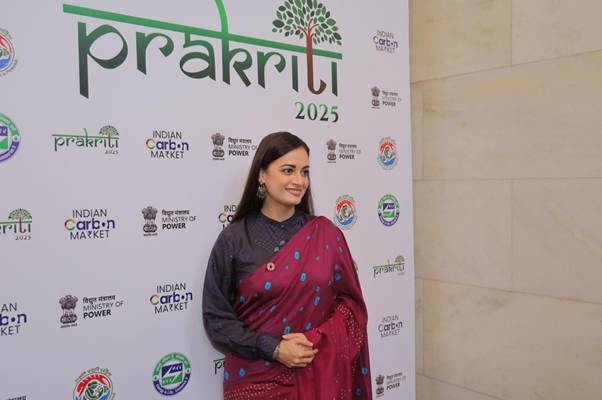
- 28 Feb 2025
In News:
- The International Conference on Carbon Markets – PRAKRITI 2025 was inaugurated by the Minister of Power and Housing and Urban Affairs.
- Organized by the Bureau of Energy Efficiency (BEE) under the Ministry of Power, the event served as a major platform for global dialogue on carbon markets, climate finance, and sustainability strategies.
Key Highlights:
PRAKRITI 2025 (Promoting Resilience, Awareness, Knowledge, and Resources for Integrating Transformational Initiatives) aimed to:
- Understand the functioning of Indian and global carbon markets.
- Discuss challenges, dynamics, and opportunities in carbon trading.
- Strengthen carbon credits, offset mechanisms, and compliance systems.
- Promote renewable energy, green innovations, and ecosystem-based interventions.
- Foster collaboration between governments, industries, and citizens.
Insights from PRAKRITI 2025
- Global Linkages:India’s carbon market will increasingly be influenced by global policies such as the European Union’s Carbon Border Adjustment Mechanism (CBAM), which imposes carbon pricing on imports like steel and aluminium. Indian industries must prepare to maintain competitiveness.
- Carbon Market Mechanisms:
- Under Article 6 of the Paris Agreement, carbon trading allows entities to buy carbon credits to offset emissions.
- Carbon credit = reduction of 1 metric ton of CO? or equivalent GHGs.
- India’s Progress:
- India ranks second globally in Clean Development Mechanism (CDM) project registrations.
- The Perform, Achieve and Trade (PAT) scheme, regulated by BEE, has saved over 106 million tonnes of CO? since 2015.
- Development of a domestic carbon market is a priority to align with global standards and leverage international finance.
- Challenges Highlighted:
- Need for robust Monitoring, Reporting, and Verification (MRV) frameworks.
- Ensuring fair benefit distribution among stakeholders.
- Developing policies tailored to India’s economic and social realities.
- Increasing private sector engagement and incentivizing renewable energy developers.
Bureau of Energy Efficiency (BEE)
- Established: 1 March 2002 under the Energy Conservation Act, 2001.
- Mandate: Develop policies and programmes to promote energy efficiency, coordinate with stakeholders, and promote self-regulation within market principles to reduce India's energy intensity.
- Role in Carbon Market: BEE is the nodal agency regulating India’s carbon trading schemes and energy conservation initiatives.
AI in Indian Agriculture
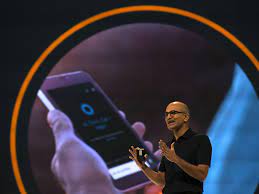
- 28 Feb 2025
In News:
Microsoft Chairman Satya Nadella recently showcased the transformative impact of Artificial Intelligence (AI) in Indian agriculture through Project Farm Vibes in Baramati, Maharashtra, where AI-driven techniques led to a 40% increase in crop yields while reducing resource consumption significantly.
What is Project Farm Vibes?
Developed by Microsoft Research in collaboration with the Agricultural Development Trust, Baramati, Project Farm Vibes is an open-sourced AI suite aimed at making farming more data-driven, efficient, and sustainable.
Key Technologies:
- Azure Data Manager for Agriculture: Aggregates satellite imagery, weather data, and sensor inputs for a complete view of field conditions.
- FarmVibes.AI: Analyzes soil moisture, temperature, humidity, and pH to offer precise, AI-driven farming recommendations.
- Agripilot.AI: Provides real-time, localized, and personalized farming advice, including in regional languages.
Impact:
- 40% increase in crop production with healthier crops.
- 25% reduction in fertilizer costs through precision spot fertilization.
- 50% decrease in water usage, promoting sustainable irrigation.
- 12% reduction in post-harvest wastage, improving profitability.
- Environmental gains through reduced chemical runoff, soil erosion, deforestation, and greenhouse gas emissions.
How is AI Revolutionizing Indian Agriculture?
- Smart Irrigation:
- AI-based soil and climate analysis optimizes irrigation.
- Schemes like "Per Drop More Crop" are integrating AI with drip and sprinkler systems.
- IoT-driven irrigation systems by ICAR automate water supply based on real-time data.
- Pest and Weed Control:
- The National Pest Surveillance System uses AI to detect pests early and issue real-time alerts.
- AI-enabled computer vision distinguishes between crops and weeds, minimizing herbicide use.
- Economic Impact:
- The AI in agriculture market is projected to grow from USD 1.7 billion (2023) to USD 4.7 billion (2028) at a CAGR of 23.1%.
- Tools like Kisan e-Mitra, an AI chatbot, are improving farmer access to government schemes like PM-Kisan.
Challenges in AI Adoption
- Lack of Awareness: Limited digital literacy in rural areas hampers effective use.
- High Costs: Expensive AI tools like drones and IoT devices are unaffordable for small and marginal farmers (85% of farming community).
- Infrastructure Gaps: Poor internet connectivity; over 25,000 villages lack mobile/internet access.
- Data Issues: AI needs accurate, real-time agricultural data, which is often missing or unreliable.
- Limited Customization: Generic AI models fail to address India's diverse agro-climatic conditions, requiring localized solutions.
Way Forward
- Strengthening Data Frameworks: Utilize platforms like AgriStack and IDEA for integrated farm data management.
- Develop Region-Specific Solutions: Leverage National AI Centres of Excellence to create localized AI applications.
- Improving Digital Infrastructure: Expand PM-WANI and BharatNet to enhance rural connectivity.
- Farmer Skilling and Awareness: Scale initiatives like NeGPA and FutureSkills PRIME for farmer education in digital technologies.
- Financial Support: Promote subsidized loans and investments through the Digital Agriculture Mission (2021-2025) to empower agri-tech startups and farmer cooperatives.
Zagros Mountains and Iraq’s Tectonic Subsidence
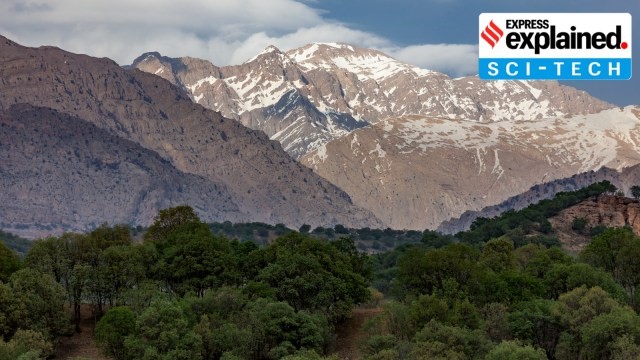
- 27 Feb 2025
In News:
Recent geological studies have found that the hilly region around the Zagros Mountains in northern Iraq is slowly sinking into the Earth, a process attributed to ancient tectonic dynamics. This discovery has implications for earthquake prediction and geothermal energy potential.
Zagros Mountains
- Location: Stretches ~1,500 km from eastern Turkey and northern Iraq across the Iranian Plateau to the Strait of Hormuz.
- Highest Peak: Mount Dena (4,409 m / 14,465 ft).
- Geological Composition: Primarily limestone and shale from the Mesozoic Era and Paleogene Period.
- Climate: Semi-arid temperate – cold winters and dry, arid summers.
- Vegetation: Dominated by oak and pistachio trees with steppe vegetation.
Geological Process Behind Iraq’s Sinking
- The Zagros region is influenced by the tectonic collision between the Arabian and Eurasian Plates.
- A sinking oceanic slab, part of the ancient Neotethys Ocean floor (over 66 million years old), is pulling the region down.
- This slab is subducting beneath the Eurasian Plate, a process occurring over tens of millions of years, making it imperceptible in human timescales.
Research Insights
- The studyused rock records, sediment analysis, and deep-earth imaging to understand the tectonic architecture of the region.
- The findings explain why the depressions around the Zagros Mountains are deeper than the current topography would suggest.
Significance of the Study
- Helps develop precise geological models critical for:
- Earthquake prediction – by understanding fault depths and configurations.
- Geothermal energy exploration – estimating areas with high geothermal gradients.
- Especially relevant in a region prone to seismic activity (e.g., 2023 Turkey-Syria earthquakes).
First Regional Dialogue and ESIC Foundation Day

- 27 Feb 2025
In News:
- India hosted the first-ever Regional Dialogue on Social Justice under the Global Coalition for Social Justice in New Delhi (Feb 2025).
- Event coincided with the 74th Foundation Day of Employees’ State Insurance Corporation (ESIC), established in 1952.
Global Coalition for Social Justice (GCSJ)
- Launched by ILO in 2023, GCSJ aims to address social justice deficits globally, aligned with SDGs.
- Membership: Open to governments, businesses, academia; India is a key member.
- Promotes inclusive, sustainable development, responsible business conduct, and labor rights.
- India leads the Asia-Pacific Coordinating Group and spearheads responsible business initiatives.
India’s Achievements in Social Protection
- As per ILO’s World Social Protection Report 2024-26:
- India’s social protection coverage (excluding health) has doubled from 24.4% (2021) to 48.8% (2024).
- India contributed 5% of the global increase in social protection coverage.
- Employability of Indian graduates rose from 33.95% (2013) to 54.81% (2024).
Key Government Initiatives
- e-Shram Mobile App launched to improve access to welfare schemes, curated job listings, and multilingual support.
- Focus on extending coverage to:
- Informal sector (unorganized, gig, platform, construction, agricultural workers).
- Women and youth, with targets like 70% female workforce participation by 2047.
- Emphasis on AI and the Future of Work, living wages, and Global Value Chains through the Decent Work Country Programme.
Constitutional Provisions Supporting Social Justice
Provision
Focus
Preamble
Social, economic, and political justice
Art. 23 & 24
Prohibit trafficking, forced and child labour
Art. 38
Reduce social and economic inequalities
Art. 39 & 39A
Fair wages, legal aid, livelihood opportunities
Art. 46
Promote education and welfare of weaker sections
About Employees’ State Insurance Corporation (ESIC)
- Statutory body under the ESI Act, 1948, Ministry of Labour& Employment.
- Eligibility: Employees earning ≤ ?21,000/month.
- Coverage: Establishments with ≥10 employees (or <10 in hazardous sectors).
- Benefits: Medical care, maternity, sickness, disability, dependent benefits, and unemployment allowance.
Significance of the Dialogue
- Platform for global best practices exchange from countries like Germany, Brazil, Australia, Philippines, and Namibia.
- Showcased India’s leadership in technology-driven social security, gender-responsive policies, and youth skilling.
- Bharatiya Mazdoor Sangh (BMS) and CII-EFI signed a Joint Statement on Responsible Business Conduct.
- Publications released include:
- Best Practices on Responsible Business Conduct
- Compendium on Social Protection in India
- Social Security for Informal Workers
Three-Language Formula and NEP 2020
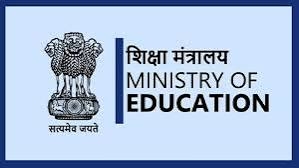
- 27 Feb 2025
In News:
The Three-Language Formula (TLF) under the National Education Policy (NEP) 2020 has sparked controversy, particularly with Tamil Nadu opposing its implementation. The Union government’s withholding of ?573 crore under the Samagra Shiksha Abhiyan (SSA) for non-compliance has intensified the Centre-State standoff.
What is the Three-Language Formula?
- NEP 2020 mandates students learn three languages, of which at least two must be Indian languages.
- States, schools, and students have flexibility to choose the languages, with no imposition from the Centre.
- The medium of instruction should be the home language, mother tongue, or regional language at least until Grade 5, preferably till Grade 8 and beyond.
- Foreign languages like French, German, and Japanese can be offered at the secondary level.
Historical Background:
- Kothari Commission (1964–66) proposed the Three-Language Formula to promote national unity and linguistic diversity.
- Formally adopted in the NPE 1968 under PM Indira Gandhi, reaffirmed in 1986 (Rajiv Gandhi), and revised in 1992 (Narasimha Rao).
- Article 351 of the Constitution mandates the Union to promote the spread of Hindi.
- Tamil Nadu has historically rejected Hindi imposition, favoring a two-language policy (Tamil and English) since CM C.N. Annadurai’s tenure.
Benefits of the Three-Language Formula (UNESCO-backed):
- Improved Learning:
- Multilingual students show better cognitive development and academic performance.
- Education in the mother tongue improves comprehension and parental engagement.
- Social Inclusion:
- Helps include marginalized communities and preserve indigenous languages.
- Promotes unity in diversity and national integration.
- Economic & Environmental Gains:
- Preserves traditional ecological knowledge.
- Example: Switzerland attributes 10% of its GDP to its multilingual heritage.
Challenges and Criticisms:
- Politicization: Language policies can fuel regionalism and identity politics.
- Educational Burden: Students, especially from monolingual or low-literacy households, may struggle with an extra language.
- Infrastructure Gaps: There’s a shortage of trained language teachers.
- Diverse States: Linguistically complex states like Nagaland may face logistical issues.
- Technological Alternatives: Tools like AI translators reduce the need for multilingual proficiency.
Way Forward:
- Focus on quality of education before adding languages.
- Promote cooperative federalism—respecting state autonomy while aligning with NEP goals.
- UNESCO-aligned implementation:
- Use sociolinguistic data for planning.
- Develop learning materials in regional languages.
- Train bilingual teachers.
- Encourage community participation in language education.
Ancient Tea Horse Road
- 27 Feb 2025
In News:
The Tea Horse Road, also known as the Southern Silk Road, was an ancient trade network connecting China, Tibet, and India. It played a pivotal role in economic, cultural, and strategic exchanges between these regions for over a millennium. Though less popular than the Silk Road, it was vital for the tea-horse trade and strategic logistics.
Geography and Route
- Length: Over 2,000 km
- Route Type: Not a single path, but a network of caravan routes
- Regions Covered:
- Originated in Southwest China (Yunnan & Sichuan)
- Passed through Tibet, Nepal, Bhutan
- Extended into India via Himalayan passes, reaching Kalimpong and Kolkata
- Key Nodes:
- Dali & Lijiang (Yunnan): Tea production centers
- Lhasa (Tibet): Central convergence point for trade
- Kalimpong& Kolkata (India): Export destinations to Europe and Asia
- Elevation: Reached up to 10,000 feet in the Himalayas
- Terrain: Extremely challenging — cold, steep, and remote
Historical Evolution
- Tang Dynasty (618–907 CE): Early mentions by Buddhist monk Yijing; trade included sugar, textiles, rice noodles, gold, saffron, and medicinal herbs
- Song Dynasty (960–1279 CE): Institutionalized the tea-for-horse exchange; established official markets for regulated trade
- Mongol Period (13th century): Heightened need for horses for military use against nomadic tribes
- Qing Dynasty's Fall (1912): Political instability weakened trade, but the road was used for global tea exports
- World War II: Gained renewed importance as a logistical route after Japanese blockade of China’s coastline
Tea and Horses – The Core Trade
- Tea: Essential in Tibetan climate; popularized due to practicality and possibly a royal dowry tradition
- Tibetan staple: Yak butter tea
- Pressed tea bricks used as currency in medieval Tibet
- Horses: Sourced from Tibet and Yunnan, vital for China’s cavalry
- Tibetan horses were prized for battles against Mongolian tribes
Decline and Modern Legacy
- Post-1949 (PRC Formation):
- Land reforms and modern infrastructure reduced reliance on traditional portering
- Mechanized transport replaced mule and porter-based systems
- Modern Times:
- Revival through tourism and heritage promotion
- Lijiang declared UNESCO World Heritage Site (1997) for its trade history and cultural legacy
Significance for India-China Relations
- Demonstrates centuries-old economic and cultural exchanges
- Reflects shared heritage through trade, Buddhism, and ethnic interactions
- Ambassador Xu Feihong recently invoked the Tea Horse Road to highlight historical Indo-China links, reinforcing its symbolic role in bilateral diplomacy
HKU5-CoV-2 (Bat Virus)
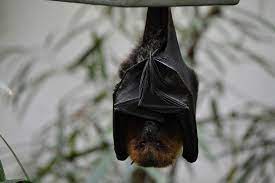
- 27 Feb 2025
In News:
A newly discovered bat coronavirus named HKU5-CoV-2 has been identified in China by a research team led by Shi Zhengli (Wuhan Institute of Virology), known for her work on bat coronaviruses.
About HKU5-CoV-2
- Type: Bat coronavirus
- Subgenus: Merbecovirus
- This group includes MERS-CoV (Middle East Respiratory Syndrome virus).
- Similarity: Shares traits with SARS-CoV-2 (COVID-19 virus).
- Discovery Location: China
Virological Features
- ACE2 Receptor Binding:
- HKU5-CoV-2 can bind to the human ACE2 receptor, the same one used by SARS-CoV-2 for cell entry.
- Binding Affinity: Lower than SARS-CoV-2, indicating weaker infectivity in current form.
- Intermediate Hosts:Can bind to ACE2 receptors in multiple mammalian species → possible spread through intermediate animals (like SARS-CoV and MERS-CoV).
- Laboratory Studies:The virus could infect lab-grown human lung and gut tissues, suggesting potential zoonotic transmission.
- Pandemic Potential:
- No immediate threat of a pandemic.
- Requires ongoing surveillance for possible mutations enhancing transmission.
Transmission Pathways
- Direct Transmission:From bats to humans through contact with bodily fluids (saliva, urine, feces).
- Zoonotic Transmission via Intermediate Host:Could jump species before infecting humans, similar to MERS and SARS-CoV.
Symptoms (Speculative)
- No confirmed human cases so far.
- Possible respiratory symptoms (based on similarity to MERS and COVID-19):
- Fever
- Cough
- Shortness of breath
- Sore throat
- Fatigue
- Body aches
Northern Pintail Duck
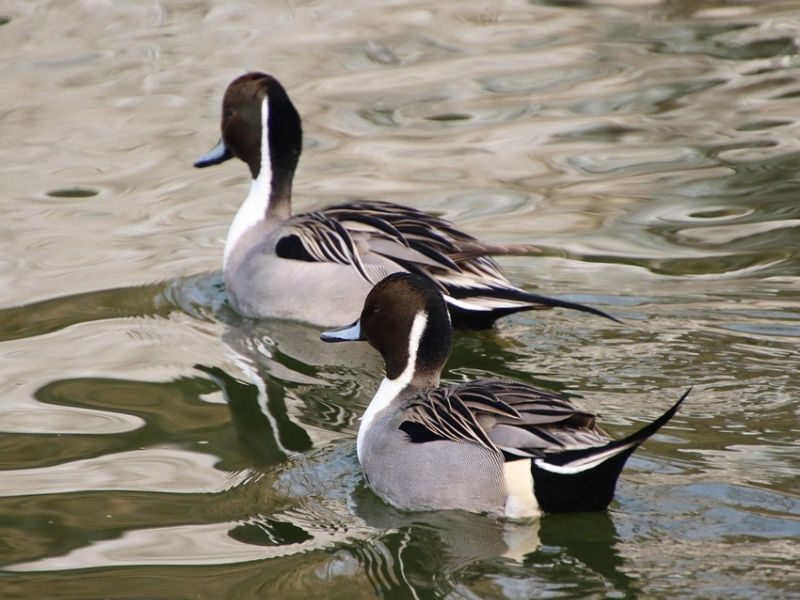
- 26 Feb 2025
In News:
A flock of Northern Pintail ducks was recently sighted at an unprecedented altitude of 13,500 feet in Tawang, Arunachal Pradesh—far above their typical wintering habitats. This rare event has sparked interest in their migration behavior and adaptability to high altitudes.
About Northern Pintail Duck
- Scientific Name:Anas acuta
- Type: Migratory waterfowl known for elegance and long-range migration
- Common Nickname: Northern nomads
Distribution & Migration
- Found across every continent except Antarctica
- Breed in northern regions of Europe, Asia, and North America
- Migrate southward in winter to regions including the Indian subcontinent
- Typically observed in low-lying wetlands; rarely at high altitudes
- Do not breed or reside south of the equator
- Seen in the high-altitude region of Arunachal Pradesh during winter, raising questions about changing migration patterns and climate adaptability
Key Features
- Size: Around 60 cm in length, over 1 kg in weight
- Wingspan: Up to 91 cm
- Speed: Capable of flying at 48 miles per hour due to aerodynamic build
- Male Appearance: Buff-gray body, chocolate-brown head, broad white stripe on chest, black back patterns
- Female Appearance: Mottled brown body, lighter chest and neck
Conservation Status
- Listed as “Least Concern” under the IUCN Red List
- Despite being widespread, their migratory nature warrants regular monitoring to track habitat changes and population health
African-Asian Rural Development Organization (AARDO)
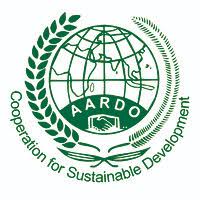
- 26 Feb 2025
In News:
The 21st AARDO Conference recently concluded in New Delhi, reaffirming the commitment to community-led rural development, local knowledge sharing, and South-South cooperation.
About AARDO
- Full Form: African-Asian Rural Development Organization
- Nature: Intergovernmental, autonomous organization
- Established:March 31, 1962
- Headquarters:New Delhi, India
- Origin:
- Conceptualized at the 1955 East Asian Rural Reconstruction Conference (Tokyo)
- Formalized after the 1961 Afro-Asian Conference on Rural Reconstruction (New Delhi)
- Permanent HQ established in 1966 in India
Membership
- Full Members:32 countries from Asia and Africa (e.g., India, Bangladesh, Egypt, Zambia, Malaysia)
- Associate Members:3 entities (e.g., Korea Rural Community Corporation, Agricultural Bank of Sudan)
- Eligibility: Open to Afro-Asian countries that are full or associate members of the UN or its specialized agencies focused on rural development
Observer Status with International Organizations
AARDO has observer status with:
- FAO – Food and Agriculture Organization
- IFAD – International Fund for Agricultural Development
- UNDP – United Nations Development Programme
- UNESCO – United Nations Educational, Scientific and Cultural Organization
- UNCTAD – United Nations Conference on Trade and Development
Objectives & Aims
- South-South Cooperation: Enhance technical and economic collaboration in rural development between Asia and Africa
- Sustainable Rural Development: Promote poverty alleviation, food security, and climate-resilient agriculture
- Capacity Building & Knowledge Sharing: Encourage exchange of best practices, innovations, and research
Functions
- Policy & Dialogue Platform: Facilitates discussions among member countries on rural development strategies
- Training & Capacity Building: Organizes international, regional, and national training programs to strengthen rural institutions
- Research & Action Studies: Initiates and disseminates research on shared challenges in agriculture and rural livelihoods
- Pilot Projects: Offers technical and financial assistance for pilot projects to serve as replicable models
- International Collaboration: Partners with UN agencies, regional bodies, and NGOs for integrated rural development
- Data Sharing: Provides members with disaggregated statistics and information for informed decision-making
Soliga Tribe and Tiger Conservation
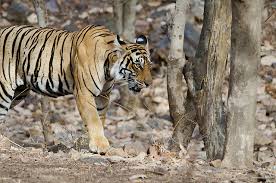
- 26 Feb 2025
In News:
In the 119th edition of Mann Ki Baat, Prime Minister Narendra Modi lauded the Soliga tribe of the BiligiriRanganathaswamy Temple (BRT) Tiger Reserve in Karnataka for their significant role in tiger conservation and sustainable forest practices.
Who are the Soligas?
- Location: Indigenous, forest-dwelling tribe residing primarily in Chamarajanagar district, Karnataka, and parts of Tamil Nadu, especially around Biligiri Rangana Hills and Male Mahadeshwara Hills.
- Meaning of the Name: "Soliga" translates to “children of bamboo”, symbolizing their deep ecological ties.
- Language: They speak Sholaga (a Dravidian language), along with Kannada and Tamil.
- Lifestyle:Soligas live in bamboo-and-mud huts, practice shifting cultivation, and depend on non-timber forest produce (NTFP) for sustenance.
- Diet & Livelihood:Honey is a staple in their diet; they extensively forage and harvest forest produce like amla, gooseberries, and medicinal herbs, leaving a portion for wildlife—a reflection of their conservation ethos.
Religious and Cultural Practices:
- Soligasworship wildlife, especially the tiger, locally called “DoddaNayi” (Great Dog). They have even built temples dedicated to tigers.
- Their belief system includes Hindu customs, animism, and naturism, highlighting their spiritual connection with nature.
- They produce eco-friendly artifacts like ‘jottai’ (leaf cups), showcasing sustainable craftsmanship.
Recognition of Forest Rights:
- In 2011, Soligas became the first tribal community in India to receive legal recognition of their forest rights within a tiger reserve, under the Forest Rights Act (FRA).
- This ruling allowed them to reside within the BRT Tiger Reserve and sustainably collect forest produce without displacing wildlife.
Role in Tiger Conservation:
- Soligas’ traditional knowledge of forest ecology helps them coexist peacefully with wildlife, minimizing human-animal conflict.
- They assist the Forest Department in fire prevention, wildlife tracking, and ecological management.
- Their cultural practices ensure minimal disturbance to wildlife. For instance, during harvest, they intentionally leave 25–33% of the produce in the forest for animals.
BiligiriRanganathaswamy Temple (BRT) Tiger Reserve:
- Location: Chamarajanagar district, Karnataka; lies at the confluence of the Western and Eastern Ghats, forming a critical wildlife corridor.
- Ecosystem: Rich in biodiversity with forest types including:
- Southern Tropical Evergreen
- Semi-Evergreen
- Moist Deciduous
- Flora:Axlewood, Rosewood, Terminalia spp., Indian Gooseberry, Ceylon Oak, Golden Shower Tree.
- Fauna: Tigers, Wild Dogs, Sloth Bears, Sambars, Bison, and endangered species like the Icthyophisghytinosus (Caecilian).
- Cultural Site: Named after Lord Rangaswamy, the reserve houses the Biligiri Temple atop mist-covered hills.
USD-INR Buy/Sell Swap Auction
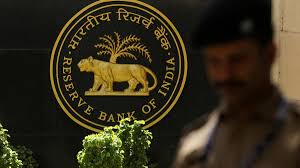
- 26 Feb 2025
In News:
The Reserve Bank of India (RBI) has announced its largest-ever USD-INR Buy/Sell Swap Auction worth $10 billionfor a tenor of three years. This strategic move is aimed at addressing the persistent liquidity deficit in the banking system and stabilizing the Rupee-Dollar exchange rate.
What is a USD-INR Buy/Sell Swap Auction?
A Dollar/Rupee Buy-Sell Swap Auction is a foreign exchange (forex) tool used by RBI to manage domestic liquidity and curb currency volatility. It is a two-leg transaction:
- First Leg (Buy Phase):Banks sell US dollars to the RBI and receive rupee liquidity.
- Reverse Leg (Sell Phase):RBI sells back the same amount of US dollars to banks at a future date (here, after 3 years), along with a swap premium.
Key Features of the February 2025 Swap Auction:
- Auction Size: USD 10 billion
- Tenor: 3 years (long-term)
- Rupee Liquidity Injected: Approx. ?86,000 crore
- Auction Date: 28 February 2025
- Spot Settlement Date: 4 March 2025
- Far-leg Settlement Date: 6 March 2028
- Reference Rate: Based on FBIL (Financial Benchmarks India Pvt Ltd) benchmark
Objectives and Benefits:
- Liquidity Management:
- Addresses durable liquidity needs; helps ease banking system deficit (estimated at ?1.7 lakh crore).
- Supports credit flow to businesses, aiding economic growth.
- Exchange Rate Stability:
- Reduces volatility in the USD/INR rate (expected to stabilize around ?86.30).
- Mitigates pressure from foreign fund outflows.
- Efficient Forex Reserve Utilization:
- Uses RBI’s reserves productively to manage monetary conditions.
- Enhances Policy Transmission:
- Aligns money market interest rates with RBI’s monetary policy stance.
- Supports Inflation Control:
- Infuses liquidity without directly adding to inflationary pressures.
Challenges and Limitations:
- Impact on Forex Reserves:Large-scale swaps temporarily tie up reserves.
- Global Dependencies:Effectiveness may be affected by global interest rate differentials, capital flows, and external shocks.
- Market Speculation Risks:Poor timing or execution could trigger speculative activity in the forex market.
- Temporary Measure:Swap auctions offer short- to medium-term relief; structural reforms are needed for long-term liquidity management.
Bharat Tech Triumph Program (TTP)

- 26 Feb 2025
In News:
Launched under the Create in India Challenge Season 1, the Bharat Tech Triumph Program (TTP) is a flagship initiative aimed at promoting India’s gaming and interactive entertainment ecosystem on the global stage.
Key Highlights
- Launch Year: 2025
- Ministry Involved: Ministry of Information and Broadcasting (MIB)
- Organizing Partner: Interactive Entertainment and Innovation Council (IEIC)
Objectives:
- Identify and showcase Indian gaming talent internationally.
- Support the growth of the gaming, animation, visual effects, and immersive technology (AR/VR/Metaverse) sectors.
- Boost the 'Create in India' initiative in the media and entertainment domain.
- Enable Indian developers and startups to create globally competitive digital products.
Program Features:
- Eligibility:
Open to developers, studios, startups, and tech companies with working prototypes in:- Game development
- Esports
- Business solutions for gaming ecosystem
- Selection Process:
- Game Submission
- Expert Evaluation – Based on product, pitch, and team viability
- Final Showcase – Winners selected by a jury
Global Exposure Platforms:
- Game Developers Conference (GDC) 2025
- Location: San Francisco
- Dates: March 17–21, 2025
- World Audio Visual Entertainment Summit (WAVES) 2025
- Location: Mumbai
- Dates: May 1–4, 2025
- Venue: Jio World Convention Centre &Jio World Gardens
- Focus Areas: Broadcasting, AVGC-XR, Digital Media, Innovation, and Films
Relevance of WAVES Summit:
- WAVES acts as a global convergence point for the Media & Entertainment (M&E) sector.
- AVGC-XR (Animation, Visual Effects, Gaming, Comics + AR/VR/Metaverse) is a central pillar, aligning with TTP’s goals.
Significance for India:
- Positions India as a global hub for innovation in digital entertainment.
- Supports Atmanirbhar Bharat in the tech and creative economy sectors.
- Encourages cross-border collaborations and export of Indian intellectual property in the gaming domain.
Quality of Public Expenditure (QPE) Index
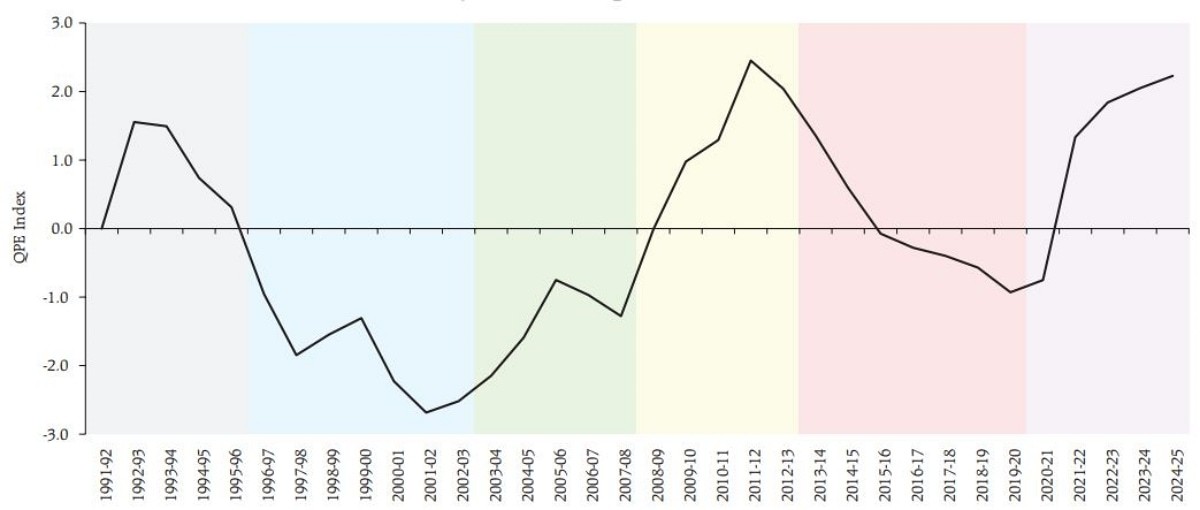
- 25 Feb 2025
In News:
The Quality of Public Expenditure (QPE) Index, developed by the Reserve Bank of India (RBI), measures how efficiently public funds are allocated and utilized by the Central and State governments. Unlike traditional fiscal measures that focus on total expenditure, the QPE Index assesses the composition and developmental impact of government spending, emphasizing long-term economic growth and social development.
Key Components of the QPE Index
Indicator What it Measures Significance
Capital Outlay to GDP Ratio - Share of GDP spent on physical infrastructure - Higher ratio = better quality of expenditure
Revenue Expenditure to Capital Outlay Ratio - Relative spending on salaries, pensions vs. asset creation - Lower ratio = better efficiency
Development Expenditure to GDP Ratio - Spending on education, healthcare, R&D, infrastructure - Higher ratio = enhanced productivity
Development Expenditure as % of Total Expenditure - Proportion of total expenditure directed to development sectors - Higher share = improved allocation
Interest Payments to Total Expenditure Ratio - Financial burden from past borrowings - Lower ratio = better fiscal health
Evolution of Public Expenditure (1991–2025)
- 1991–1997(Early liberalization):
- Slight improvement at Centre; states faced fiscal pressure.
- Public investment declined due to focus on fiscal deficit reduction.
- 1997–2003:Decline in QPE due to Fifth Pay Commission, rising interest burden, dominance of revenue expenditure.
- 2003–2008(FRBM Era):
- Fiscal Responsibility and Budget Management (FRBM) Act, 2003 improved fiscal discipline.
- States gained from higher tax devolution; capital spending rose.
- Growth momentum sustained until the 2008 Global Financial Crisis (GFC).
- 2008–2013(GFC response):
- Stimulus spending initially boosted development but later widened fiscal deficits.
- Spending quality eroded over time.
- 2013–2019(GST & 14th Finance Commission):
- 14th Finance Commission (2015) increased states' tax share to 42%, improving state-level development spending.
- GST rollout (2017) benefited states more than Centre initially, stressing Centre’s finances.
- 2019–2025(COVID-19 & Recovery):
- Pandemic-induced fiscal stimulus reduced QPE temporarily.
- Post-pandemic recovery led by record capital expenditure boosted infrastructure, improving QPE.
- By FY 2024–25, India's QPE reached its highest level since 1991 reforms.
Recent Trends in Public Expenditure (as per Economic Survey 2024–25 & Budget 2025–26)
- Capital expenditure (Capex) rose 8.2% YoY.
- Revenue expenditure (primarily by states) increased 12% YoY.
- FY 2025–26 Budget allocated ?11.21 lakh crore for Capex (3.1% of GDP).
- Capex to GDP ratio increased from 1.5% in 2000 to 2.5% in 2023.
- Revenue expenditure to Capex ratio improved from 8:1 in 2000 to 5:1 in 2023.
- Development expenditure rose from 6% to 8% of GDP between 2000–2023.
- Interest payments declined from 25% to 20% of total expenditure in the same period.
Why Quality of Public Expenditure Matters
- Governments use citizens’ money (via taxes or borrowing). Efficient use ensures better socio-economic outcomes.
- High QPE means greater focus on productive investment over populist spending (freebies, subsidies).
- Better QPE leads to:
- Higher GDP growth (average 6.5% annually since 2000).
- Improved infrastructure and service delivery.
- Enhanced social indicators like literacy (77.7% in 2023) and life expectancy (70 years).
Challenges Affecting Public Expenditure Quality
- Persistent revenue deficits (3.3% of GDP in 2023) limit fiscal space for Capex.
- Rising populism: Loan waivers, cash handouts, free electricity.
- Welfare scheme inefficiencies: Leakages in MGNREGA, PDS.
- Debt servicing: High interest payments constrain spending.
- Inter-state disparities: Unequal fiscal capacity hampers balanced development.
Way Forward
- Boost Capex to over 3% of GDP to enhance infrastructure-led growth.
- Rationalize subsidies via Direct Benefit Transfers (DBT).
- Strengthen fiscal federalism through equitable devolution and performance-based grants.
- Leverage technology for transparent and outcome-based expenditure tracking.
- Reform FRBM Act:
- Focus on debt-to-GDP targets.
- Introduce flexibility in deficit norms during crises.
Biotechnology and Bioeconomy in North East India
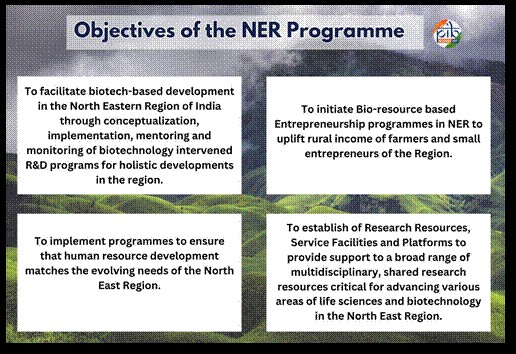
- 25 Feb 2025
In News:
The North Eastern Region (NER) of India, endowed with rich biodiversity, cultural heritage, and indigenous knowledge, is undergoing a transformation through biotechnology-led initiatives. The Department of Biotechnology (DBT) under the Ministry of Science and Technology is spearheading this change to harness the region’s biological resources for inclusive and sustainable development.
Biotechnology: Definition and Types
Biotechnology involves the use of biological systems or organisms to develop products and technologies that improve healthcare, agriculture, industry, and the environment.
Types of Biotechnology:
- Medical Biotechnology – Vaccines, gene therapy, diagnostics.
- Agricultural Biotechnology – Pest-resistant crops, high-yield seeds, and sustainable agriculture.
- Industrial Biotechnology – Biofuels, biodegradable plastics, enzyme-based processes.
- Environmental Biotechnology – Waste treatment, pollution control, and bioremediation.
Why North East India is Ideal for Biotech Development
- Biodiversity Hotspot: Home to 8,000+ plant species, including 850+ medicinal plants and agro-climatic diversity.
- Indigenous Knowledge: Rich traditional practices in herbal medicine and organic farming.
- Agri-Biotech Potential: Ideal for medicinal crops, essential oils, and organic produce.
- Industrial Opportunity: Scope for biofuel production, value-added food processing, and pharmaceutical industries.
Key DBT Programmes and Initiatives in the North East
- DBT North Eastern Programme
- Since 2010, 10% of DBT’s annual budget is dedicated to NER.
- Focus: R&D, education, infrastructure, entrepreneurship, and employment generation in biotechnology.
- Twinning R&D Programme (2010–11)
- Promotes collaborative biotech research between NER and national institutes.
- Over 65 institutional partnerships, supporting 650+ projects and benefiting ~2,500 researchers/students.
- Biotech Hubs Network (Since 2011)
- 126 Biotech Hubs established across universities and colleges.
- Phase II supports 54 hubs for focused research on local issues.
- BLiSS (Biotech Labs in Senior Secondary Schools): Started in 2014 to introduce biotechnology at the school level.
- Visiting Research Professorship (VRP) Programme:Launched in 2015 to utilize the expertise of top scientists for NER biotechnology development.
- Chemical Ecology Programme (2015): Collaborative training by NCBS, UAS, and IISc for Ph.D. scholars in the field of chemical ecology.
- Genomics Training Programme (2016):Conducted by DBT-NIBMG, Kalyani, for biomedical researchers in the region.
Agri-Biotech and Livelihood-Oriented Initiatives
- DBT-NECAB (Phase III): Enhancing biotech applications in agriculture.
- Citrus Research: Disease-free scion material of Khasi mandarin and sweet orange developed at IHT, Assam.
- Medicinal Crop Cultivation: 64.1 acres under Curcuma caesia and lemongrass cultivation; 649 farmers trained.
- Essential Oil Distillation: Facility set up in Mudoi village, Arunachal Pradesh, for revenue support.
- Value-Addition in Wild Fruits: Docynia indica (Assam apple) processed into products like jam, pickles, and candy.
Technology-Driven Achievements
- Bacterial Blight-Resistant Rice (Patkai): Developed by Assam Agricultural University; notified by CVRC.
- Brucellosis Detection Kit: Lateral Flow Assay (LFA) to detect anti-Brucella antibodies in livestock.
- Pig Disease Diagnosis Expert System (PDDES): Mobile app for livestock disease detection and management (available on Google Play Store).
Challenges in NER’s Biotech Growth
- Limited infrastructure for biotech R&D and production.
- High cost of commercial biotech projects.
- Shortage of trained professionals in advanced biotech fields.
- Vulnerability to climate change and poor connectivity with markets.
Way Forward
- Strengthen Infrastructure: Develop biotech parks, R&D centers, and incubators.
- Skill Development: Train local youth, researchers, and farmers.
- Public-Private Partnerships: Foster industrial collaboration for startups and innovation.
- Eco-friendly Technologies: Promote sustainable and low-impact biotech industries.
- Digital Integration: Use AI and data analytics for agricultural and healthcare biotech solutions.
Northern White Rhino
- 25 Feb 2025
In News:
The Northern White Rhino (NWR) is on the brink of extinction, with only two females—Najin and Fatu—remaining at the Ol Pejeta Conservancy in Kenya. However, a breakthrough in In-Vitro Fertilization (IVF) has rekindled hope for reviving this subspecies, with 36 lab-created embryos ready for implantation. This effort is part of an international project named BioRescue.
About the White Rhino
- Scientific Name: Ceratotherium simum
- Common Name: Square-lipped rhinoceros (due to broad upper lip)
- Subspecies:
- Northern White Rhino (Ceratotherium simum cottoni)
- Southern White Rhino (Ceratotherium simum simum)
- Habitat:
- Southern White Rhino: South Africa, Namibia, Zimbabwe, Kenya
- Northern White Rhino: Historically central and eastern Africa; now only in captivity
- IUCN Status:
- White Rhino (overall): Near Threatened
- Northern White Rhino: Critically Endangered
- Southern White Rhino: Near Threatened
Biological Features
- Second-largest land mammal after elephants
- Square upper lip adapted for grazing on short grasses
- Two horns, with the front horn being larger
- No actual color difference between black and white rhinos
Social & Dietary Behavior
- Diet: Pure herbivores; feed almost exclusively on short grasses
- Behavior:
- Semi-social and territorial
- Males mark territories with dung
- SWRs form larger social herds; NWRs were found in smaller groups
Threats to Survival
- Poaching for horns
- Habitat loss due to human encroachment
- Civil unrest, particularly in their native range
- Low genetic diversity, especially critical in the NWR
- Climate change, affecting habitat and water sources
Conservation Through Reproductive Technology
BioRescue Initiative
- An international scientific effort launched in 2015 to save the NWR using advanced reproductive technologies.
- Uses frozen sperm from deceased males and eggs from Najin and Fatu to create embryos in the lab.
- 36 embryos have been successfully created and are stored for future implantation.
IVF and Surrogacy
- First-ever rhino pregnancy via lab-made embryo announced recently.
- Southern white rhinos are used as surrogate mothers due to genetic similarity and higher population.
- IVF and embryo transfers are the only options since the last male NWR, Sudan, died in 2018, and both remaining females are non-reproductive due to age and health.
Challenges & Concerns
- Limited gene pool restricts genetic variability.
- Loss of unique traits if crossbred with southern white rhinos.
- Behavioral imprinting: IVF calves must learn from remaining NWR females before they pass away.
- Ethical and ecological concerns: Critics argue conservation must also address root causes like poaching, habitat destruction, and lack of genetic diversity, not just focus on “test-tube” solutions.
Indian Rhinoceros
- Scientific Name: Rhinoceros unicornis (Greater One-Horned Rhino)
- IUCN Status: Vulnerable
- Habitat: Indian subcontinent (Assam, West Bengal, UP, Nepal)
- It is distinct from African rhinos, both genetically and ecologically.
Electronic Personnel License (EPL) for Pilots
- 25 Feb 2025
In News:
India has launched the Electronic Personnel License (EPL) for pilots, becoming the second country globally, after China, to implement this advanced digital licensing system.
What is EPL?
- Electronic Personnel License (EPL) is a digital version of pilot licenses, replacing the traditional physical cards.
- Pilots can securely access their EPL via the eGCA Mobile Application developed by the Directorate General of Civil Aviation (DGCA).
- It ensures real-time verification, enhancing efficiency, transparency, and security in licensing procedures.
Significance of EPL
- Aligns with:
- Digital India and Ease of Doing Business initiatives.
- ICAO’s Amendment 178 to Annex 1 on Personnel Licensing, promoting digital transformation.
- Enhances:
- Safety and efficiency in civil aviation operations.
- Environmental sustainability by reducing the use of plastic and paper.
- Global employability of Indian pilots through instant international credential verification.
Implementation & Governance
- Ministry: Ministry of Civil Aviation, Government of India.
- Executing Agency: Directorate General of Civil Aviation (DGCA).
- EPL implementation positions India as a leader in aviation innovation and modern governance.
International Civil Aviation Organization (ICAO):
- Established: 1947 under the Chicago Convention (1944).
- Headquarters: Montreal, Canada.
- Nature: A specialized intergovernmental agency affiliated with the United Nations (UN).
- Functions:
- Sets standards and regulations for aviation safety, security, efficiency, and environmental performance.
- Promotes peaceful and efficient international air transport.
- Facilitates global cooperation and market liberalization in aviation.
Jhumoir Binandini (Jhumur) Dance
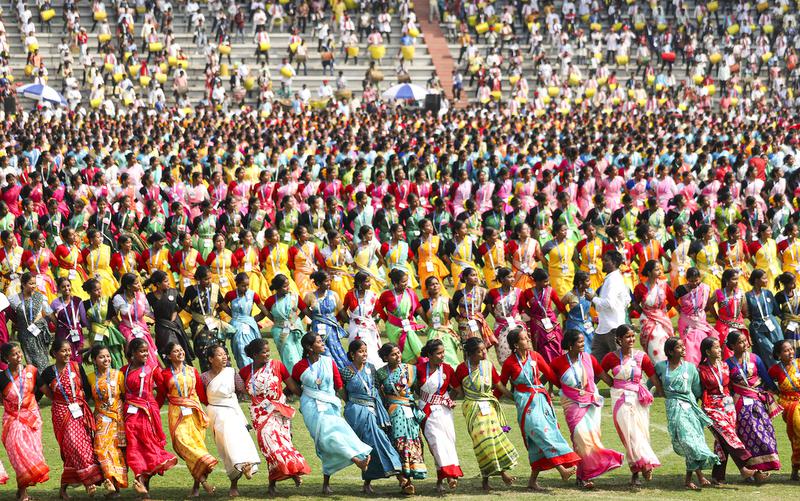
- 25 Feb 2025
In News:
The Prime Minister of India is set to attend the Jhumoir Binandini (Mega Jhumoir) 2025, a grand cultural event featuring around 8,600 performers showcasing the traditional Jhumur dance. This event highlights the rich cultural contributions of the tea tribe community of Assam.
About Jhumoir (Jhumur) Dance
- Jhumur, also known as Jhumoir, is a traditional folk dance performed predominantly by the Adivasi tea tribes of Assam.
- It is typically showcased during the harvest season, as well as on occasions like weddings and community festivals.
- The dance was introduced to Assam by the tea garden workers, who originally migrated from regions like Jharkhand, Odisha, Chhattisgarh, and West Bengal in the 19th century under British colonial rule.
Cultural Origins and Community
- The dance traces its roots to the Sadan ethnolinguistic group from the Chotanagpur plateau (present-day Jharkhand).
- The tea tribe community is a multi-ethnic group comprising descendants of migrant tea garden laborers.
- These communities have significantly shaped Assam’s socio-cultural landscape.
Performance Style and Attire
- Jhumur is performed in a circular formation, with dancers often holding each other's waists.
- The performance features rhythmic footwork, swaying movements, and energetic music.
- Women typically wear colorful sarees, often in red and white, while men dress in dhotis and kurtas.
- The musical accompaniment includes traditional instruments like the Madal, Dhol, Dhak, Taal (cymbals), and Flute.
Themes and Social Significance
- Jhumur songs blend liveliness with social commentary, often highlighting the struggles, exploitation, and migration experiences of the tea plantation workers.
- Major tea garden festivals where Jhumur is performed include Tushu Puja and Karam Puja, both celebrating the harvest.
- The dance fosters community bonding, promotes cultural pride, and represents Assam’s syncretic cultural heritage.
- It stands as a symbol of inclusivity, unity, and the resilience of the tea tribe community.
Dr. Purnima Devi Barman
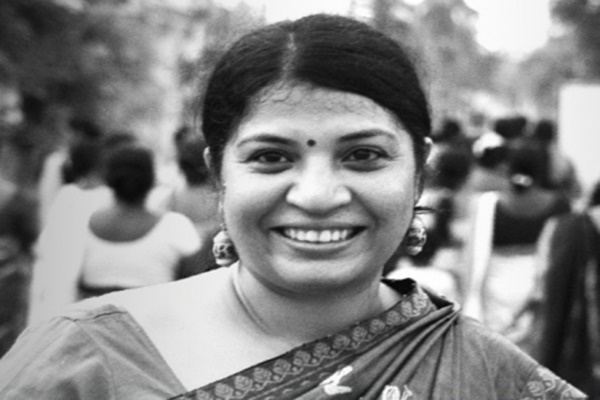
- 24 Feb 2025
In News:
Indian wildlife biologist Dr. Purnima Devi Barman has been named among TIME Magazine’s Women of the Year 2025, recognizing her as one of 13 global leaders working toward a more equitable and sustainable world. She is the only Indian woman on the list.
Key Contributions:
- Known for her pioneering conservation work with the greater adjutant stork (locally called Hargila), once critically endangered and culturally stigmatized in Assam.
- Founded the Hargila Army, a women-led grassroots movement focused on protecting the stork’s habitat and changing negative local perceptions.
- Her model uniquely blends wildlife conservation with women’s empowerment, engaging thousands of rural women in ecological and livelihood activities.
Impact:
- Due to her efforts, the greater adjutant stork’s population in Assam has significantly recovered, leading to its status being upgraded from “endangered” to “near threatened” by IUCN.
- The Hargila Army, with over 10,000 members, participates in bird rescue, awareness campaigns, tree planting, and embroidery-based income generation.
- Her approach has become a global model for community-based conservation.
Background:
- Hails from the Kamrup region of Assam.
- Holds a Master’s degree in Zoology from Gauhati University.
- Inspired by her early life near the Brahmaputra and her grandmother’s teachings on biodiversity.
Awards & Recognition:
- Nari Shakti Puraskar (2017) – India’s highest civilian award for women.
- UN Champions of the Earth Award (2022) – For entrepreneurial vision in conservation.
- Whitley Gold Award (2017, 2024) – Often called the "Green Oscar".
Other Roles:
- Director of Women in Nature Network (YNN) – India chapter.
- Member of IUCN’s Stork, Ibis, and Spoonbill Specialist Group.
About TIME Magazine:
- Founded in 1923, USA.
- Known for its global recognitions like Person of the Year and Women of the Year.
- Now operates as a multimedia platform covering politics, science, and culture.
Microsoft’s Majorana 1 Quantum Chip
- 24 Feb 2025
In News:
Microsoft has unveiled Majorana 1, a new quantum chip that marks a significant advancement in quantum computing, suggesting that scalable quantum systems could be achieved in years rather than decades.
What is Majorana 1?
- It is the world’s first quantum chip built on a topological architecture, using Majorana fermions, exotic subatomic particles that are both particles and antiparticles.
- The chip is designed to be more stable and error-resistant than current quantum technologies developed by competitors like Google and IBM.
Core Technology & Innovation:
- Material Composition: Made from indium arsenide (a semiconductor) and aluminum (a superconductor).
- Topological Superconductivity: When cooled near absolute zero and exposed to magnetic fields, it enables the formation of Majorana Zero Modes, which serve as building blocks for stable qubits.
- Topoconductor Architecture: A new class of materials creating a topological state, offering enhanced fault tolerance.
Quantum Advantage:
- Qubit Efficiency: Majorana 1 reduces the number of physical qubits needed to generate logical (error-corrected) qubits.
- Error-Resistance: Its design addresses two major quantum computing limitations — qubit instability (decoherence) and high error rates.
- Scalability Potential: The chip includes eight topological qubits, with future potential to scale up to a million-qubit system.
Why This Matters:
- Improved Reliability: Lower error rates enhance the practical applicability of quantum systems.
- Accelerated Development: Brings the world closer to realizing commercially viable quantum computers.
- Wide Applications: Potential use in drug discovery, material science, clean energy solutions, and more.
- AI Integration: May combine with artificial intelligence to tackle global challenges like microplastic degradation.
Quantum Computing in Brief:
- Quantum Computers use qubits and properties like superposition and entanglement to perform highly complex calculations.
- Major Challenges: Qubit instability and error correction.
- Significance: Quantum computing could revolutionize fields by solving problems beyond the reach of classical computers.
Technology Adoption Fund (TAF)
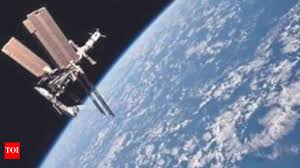
- 24 Feb 2025
In News:
IN-SPACe, India’s space sector regulator under the Department of Space, has launched the Technology Adoption Fund (TAF) to accelerate the commercialization of indigenous space technologies.
About TAF:
- Objective: To bridge the gap between early-stage innovation and market-ready space solutions developed by Indian startups, MSMEs, and industries.
- Goal: Reduce dependence on imported technologies and strengthen India's position in the global space sector.
Key Features:
- Financial Support:
- Startups/MSMEs: Up to 60% of project cost.
- Larger industries: Up to 40%.
- Funding cap: ?25 crore per project.
- Eligibility: Open to all non-government entities (NGEs) with commercially viable space innovations.
- Support Provided:
- Partial funding for development and commercialization.
- Technical mentoring and guidance.
- Focus Areas: Launch vehicles, satellites, space-based applications, and related services.
- Outcomes Expected:
- Development of new space products.
- Intellectual property generation.
- Enhanced production capabilities.
- Economic growth and job creation.
About IN-SPACe:
- Established: 2020
- Ministry: Department of Space
- Location: Ahmedabad, Gujarat
- Role: Single-window agency promoting private participation in India's space ecosystem.
- Functions:
- Authorizes and monitors private sector space activities.
- Facilitates access to ISRO infrastructure.
- Collaborates with academia, industry, and research bodies.
Significance:
- Encourages private innovation in space tech.
- Aligns with the larger vision of making India a hub for space entrepreneurship.
- Strengthens India’s self-reliance and competitiveness in global space technology.
Remission and the Supreme Court’s 2025 Ruling
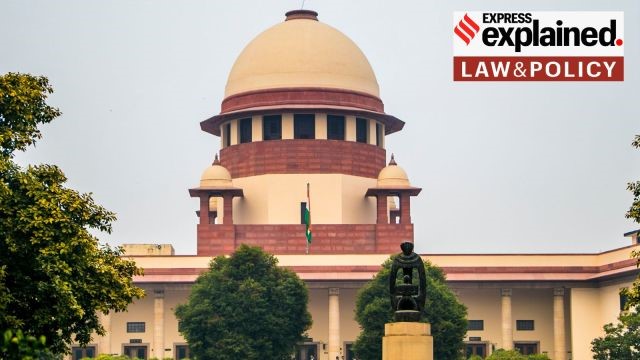
- 24 Feb 2025
In News:
Recently, the Supreme Court directed states with remission policies to consider the premature release of prisoners even if they don’t apply for remission beforehand.
What is Remission?
- Remission refers to the reduction of a convict's sentence by the government before the term is completed. It does not nullify the conviction, but shortens imprisonment.
- It is governed by:
- Section 473 of BNSS, 2023 (earlier Section 432 of CrPC, 1973) – empowers state governments to grant remission.
- Articles 72 and 161 of the Constitution – empower the President and Governors respectively to remit sentences.
- Section 475 of BNSS (earlier Section 433A CrPC) – restricts remission for life convicts found guilty of offences punishable by death until 14 years of imprisonment are completed.
Background: SC’s Suo Motu Intervention
- The Supreme Court in 2025, in the suomotu case In Re: Policy Strategy for Grant of Bail, altered the interpretation of remission rules to address prison overcrowding.
- The Court held that states must consider remission for eligible convicts even without a formal application, if a remission policy exists.
Shift in Judicial Interpretation
- Earlier rulings (Sangeet v. Haryana and Mohinder Singh v. Punjab, 2013) required a convict's application for remission.
- The 2025 judgment acknowledges that many state prison manuals already mandate prison authorities to initiate remission review.
- It recognized that failing to consider remission proactively could lead to arbitrary discrimination, violating Article 14 (Right to Equality).
Key Guidelines Issued by the Supreme Court
- Suo motu Remission:States must automatically assess eligibility under remission policies—no application needed.
- Mandatory Remission Policy:States without existing remission policies must formulate a comprehensive one within two months.
- Conditions for Remission Must Be:
- Reasonable, non-oppressive, and clearly defined.
- Based on factors like motive, criminal background, and public safety.
- Aimed at rehabilitation and prevention of recurrence.
- Safeguards Against Arbitrary Cancellation:
- Minor breaches shouldn’t lead to automatic cancellation.
- Notice and hearing must be given before cancellation.
- Transparency:
- Legal aid bodies must monitor remission cases.
- States to maintain real-time digital data on remission.
Significance and Implications
- The ruling helps streamline remission processes and could contribute to decongesting Indian prisons, which are heavily overcrowded.
- It ensures uniformity and fairness in the exercise of executive powers related to sentencing.
- Reinforces constitutional values of equality and procedural fairness for prisoners.
Note:
- Remission ≠ Pardon: Remission reduces sentence, doesn’t erase conviction.
- Articles 72 & 161: Concern constitutional remission powers (President & Governor).
- BNSS Sections 473 & 475: Replace CrPC Sections 432 & 433A, relevant for state remission powers.
- Suo motu action by SC: Taken to address systemic prison overcrowding.
- Article 14 invoked: To ensure equitable treatment of eligible prisoners.
Brazil Joins OPEC+

- 24 Feb 2025
Brazil Joins OPEC+
Source: Times of India
In News:
In February 2025, Brazil officially joined OPEC+, a coalition of oil-producing nations. This development comes ahead of Brazil hosting COP30, the annual UN climate summit.
About OPEC and OPEC+
- OPEC (Organization of the Petroleum Exporting Countries):
- A permanent intergovernmental organization established in 1960 at the Baghdad Conference.
- Aims to coordinate and unify petroleum policies to ensure stable prices and regular supply.
- Headquartered in Vienna, Austria.
- Current members include Saudi Arabia, Iran, Iraq, UAE, Nigeria, Libya, Algeria, and others.
- OPEC+ Formation:
- Created in 2016 to stabilize oil markets, particularly in response to rising U.S. shale oil production.
- Includes 12 OPEC members plus 11 non-OPEC countries like Russia, Kazakhstan, Mexico, and now Brazil (2025).
- Functions as a forum for strategic discussions but not all members are bound by production quotas.
Brazil’s Role and Strategic Significance
- Oil Production Status:
- Seventh-largest oil producer globally, with around 4.3 million barrels/day.
- In 2024, crude oil became Brazil’s top export, overtaking soybeans.
- OPEC+ Membership:
- Brazil joins the Charter of Cooperation but retains autonomy in production decisions.
- It seeks to influence global oil policy while protecting its energy interests.
- Balancing Act:
- While focusing on oil revenue for economic growth and energy transition funding, Brazil also pursues renewable energy through agencies like IRENA.
- This dual approach reflects an attempt to align development with environmental commitments.
Environmental Concerns and Criticism
- Brazil’s decision to expand oil exploration—especially near sensitive ecosystems like the Amazon—has drawn criticism.
- Environmentalists argue it contradicts climate goals, particularly as Brazil prepares to host COP30.
Note:
- OPEC+ is not a formal organization but a strategic alliance.
- Brazil is part of OPEC+ but is not bound by production quotas.
- OPEC’s headquarters is in Vienna, Austria (Austria is not an OPEC member).
- India is not a member of OPEC or OPEC+.
Ali Ai Ligang Festival and the Mising Tribe
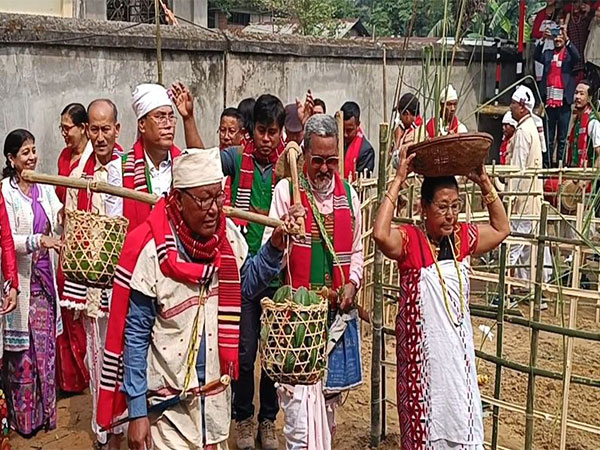
- 23 Feb 2025
In News:
The Mising tribe, Assam’s largest tribal community, celebrated Ali Ai Ligang in Shankarpur, Jorhat, on the first Wednesday of the Fagun month.
About the Mising Tribe
- Region: Indigenous tribe from Northeast India; primarily reside in Upper Assam and parts of Arunachal Pradesh, with some presence in South Tibet (China).
- Population: As per Census 2011, there are 6,80,424 Mising people in Assam.
- Ethnolinguistic Group: Belong to the Tani group, speak Tibeto-Burmese languages.
- Referred as: Called “Lhobhas” (southerners) by Tibetans.
- Unique Feature: Known as the only riparian tribe of Northeast India, with livelihoods closely linked to rivers like the Brahmaputra.
- Habitat: Construct stilt houses known as Chang Ghar to withstand seasonal floods.
Cultural and Religious Practices
- Religion: Practice Donyi-Poloism – worship of the Sun (Donyi) and the Moon (Polo) as supreme deities.
- Traditional Economy:
- Traditionally practiced Jhum (slash and burn) cultivation.
- Now settled cultivators skilled in wet paddy cultivation.
- Engage in fishing, weaving, and vegetable farming.
- Women are proficient in weaving traditional Mising textiles.
Ali Ai Ligang Festival
- Main Festival of the Mising community.
- Timing: Celebrated in February, on the first Wednesday of Fagun month (as per the Assamese calendar).
- Name Meaning:
- Ali – edible root
- Ai – seed
- Ligang – sowing
Signifies the beginning of the agricultural cycle – first sowing of seeds and roots.
Significance and Rituals
- Purpose: Marks the start of cultivation, invokes blessings from Donyi-Polo to protect crops from pests and natural calamities.
- Community Importance: Strengthens communal ties and preserves agrarian traditions.
- Ritual Practices:
- Morung Okum (Morung Ghar) – youth dormitory where offerings like Apong (rice beer), dry meat, and fish are made.
- Gumrag Dance – performed by men and women to signify joy, unity, and prosperity.
- Feast and Dress – Traditional Mising delicacies are prepared, and people wear colorful ethnic attire.
Modern Celebrations
- Originally village-based, now also celebrated in urban centers like Jorhat.
- Includes stage performances, cultural competitions, and large community gatherings.
- In Jorhat, it has been celebrated for the past 40 years, organized annually by Mising Agom Kebang (Mising apex literary and cultural body).
SWARBICA Executive Body Meeting 2025

- 23 Feb 2025
In News:
- The Executive Body Meeting of the South and West Asian Regional Branch of the International Council on Archives (SWARBICA) was held on 20–21 February 2025 at the India International Centre, New Delhi.
- It was inaugurated by Union Minister for Culture and Tourism, Gajendra Singh Shekhawat, and hosted by the National Archives of India.
- This is the second time India has hosted the SWARBICA meeting, the last being in Colombo, Sri Lanka, in 2017.
Key Highlights
- The event marked the first SWARBICA Executive Meeting in eight years.
- Participating nations included Nepal, Bhutan, Bangladesh, and Sri Lanka.
- Pakistan joined the meeting virtually, while Iran could not attend due to visa-related issues.
- The meeting provided a platform for regional cooperation in archival development, emphasizing shared cultural and religious heritage.
Agenda and Focus Areas
- Digital Preservation & Archives Digitization:
- Arun Singhal, Director General of the National Archives of India (NAI) and Treasurer of SWARBICA, presented NAI’s ongoing efforts in the digitization of archival records.
- Emphasis was placed on training programs, technical exchange, and conservation practices.
- AI in Digital Archiving:
- Aseminar titled "Using AI for Digital Preservation in Archives" was organized.
- Experts from India, Bangladesh, Nepal, Sri Lanka, and SAMHiTA (India International Centre) discussed the potential of artificial intelligence in archival science.
About SWARBICA
- It functions as a regional arm of the International Council on Archives (ICA), fostering collaboration among archival institutions in South and West Asia.
- Established: The idea was proposed in 1973 at an ICA meeting in Brussels and officially launched on 11th December 1976 at Vigyan Bhawan, New Delhi.
- SWARBICA promotes professional networking, training, resource sharing, and advancement in archival practices among member countries.
Significance for India
- Reflects India’s leadership in regional cultural cooperation.
- Aligns with national goals of digital governance, knowledge preservation, and heritage conservation.
- Strengthens India's cultural diplomacy in South and West Asia.
Mass Stranding of False Killer Whales in Tasmania
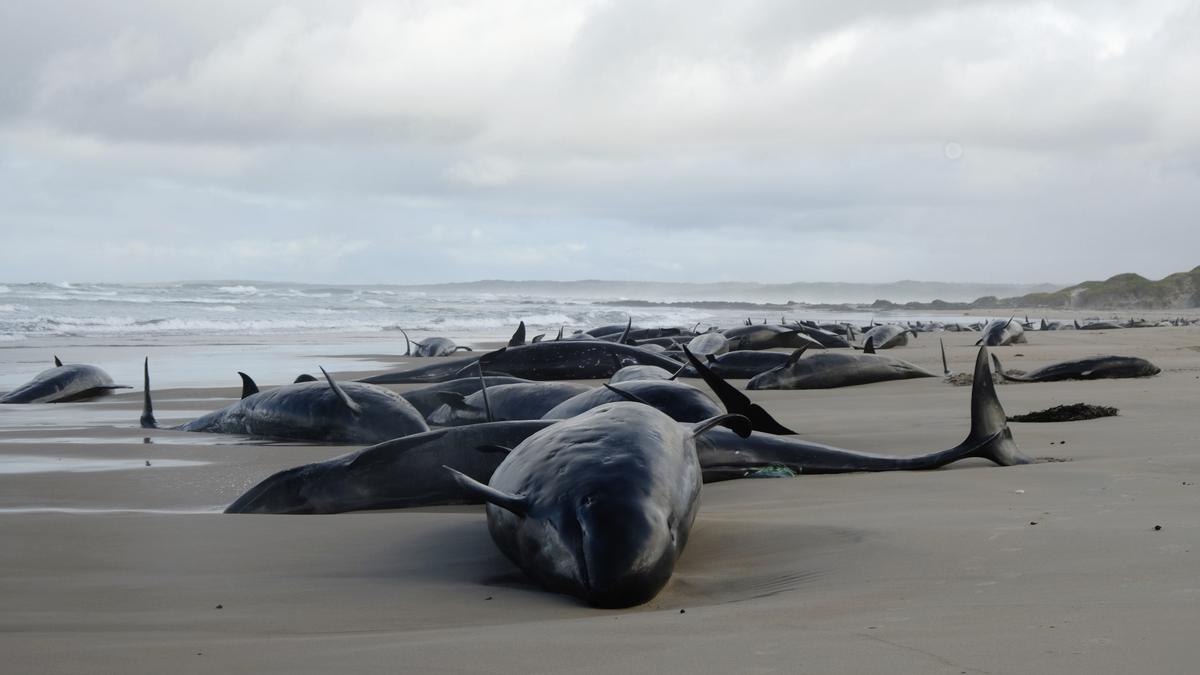
- 23 Feb 2025
In News:
Recently, over 150 false killer whales were found stranded on a remote beach near Arthur River on the northwest coast of Tasmania, Australia. The incident is one of several mass strandings reported in the region in recent years.
The event echoes earlier mass strandings:
- In 2022, 230 pilot whales stranded at Macquarie Harbor.
- In 2020, 470 long-finned pilot whales were stranded at the same site—the largest mass stranding in Australian history.
Possible Causes of Whale Strandings
Although the precise cause remains uncertain, potential factors include:
- Disorientation from loud underwater noises (e.g., naval exercises, seismic surveys)
- Illness, old age, injury
- Fleeing predators
- Severe weather events
- Geomagnetic anomalies
About False Killer Whales
- False killer whales (Pseudorca crassidens) are not true killer whales but belong to the Delphinidae family, which also includes dolphins and pilot whales.
- They are large, social cetaceans, often found in warm, deep oceanic waters.
- These whales are highly vocal and social, forming strong social bonds within pods.
- Like other cetaceans, they rely on echolocation (underwater sound) for communication, hunting, and navigation.
About Killer Whales (Orcas)
- Although not involved in the stranding, killer whales (Orcinus orca) are relevant as close relatives within the same family (Delphinidae).
- Known for their distinct black and white markings, orcas are the largest members of the dolphin family.
- They are globally distributed in both open oceans and coastal waters.
- Killer whales live in stable matrilineal pods and use complex vocalizations.
Conservation Status
- The IUCN Red List classifies false killer whales and killer whales as Data Deficient, indicating that there is insufficient information to assess their risk of extinction.
WEST Tokamak Reactor
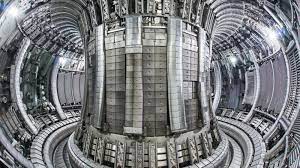
- 23 Feb 2025
In News:
The WEST Tokamak reactor in southern France has set a new world record by sustaining a nuclear fusion plasma for 1,337 seconds (22 minutes and 17 seconds), surpassing the previous record of 1,066 seconds held by China’s EAST reactor by 25%. This achievement is a major milestone in the global quest for clean, limitless energy through nuclear fusion.
About Nuclear Fusion
- Nuclear Fusion is the process of combining two light atomic nuclei (typically deuterium and tritium) to form a heavier nucleus, releasing vast amounts of energy.
- The mass defect (loss of mass) in the fusion process converts into energy, as per Einstein’s equation E=mc2E = mc^2E=mc2.
- This reaction occurs in the plasma state—a hot, ionized gas consisting of free electrons and atomic nuclei.
How Tokamak Reactors Work
- A Tokamak is a doughnut-shaped (toroidal) magnetic confinement device that replicates the Sun’s fusion process.
- It uses superconducting magnetic coils to confine and heat the plasma to temperatures exceeding 50 million°C, about three times hotter than the Sun's core.
- Fusion reactors inject external power (WEST used 2 MW) to maintain the plasma and prevent it from touching reactor walls.
WEST Reactor: Key Highlights
- Operated by the French Alternative Energies and Atomic Energy Commission (CEA).
- Aims to simulate long-duration, high-temperature plasma conditions.
- Reached a plasma state sustained for over 22 minutes at 50 million°C.
- Contributes critical insights and validation to the ongoing ITER project, the world’s largest nuclear fusion experiment also based in southern France.
Significance of the Achievement
To make fusion viable for electricity generation, three key conditions must be met:
- High temperature – to overcome electrostatic repulsion between nuclei.
- Sustained confinement time – achieved by WEST.
- Sufficient plasma density – to ensure high collision rates.
Maintaining plasma for extended durations is crucial for transitioning from experimental reactors to commercial fusion energy systems.
Advantages of Nuclear Fusion
- High Energy Output: Produces 4x more energy per kg of fuel than fission, and nearly 4 million times more than fossil fuels.
- Environmentally Clean: Emits no greenhouse gases or long-lived radioactive waste. Only byproducts are inert helium and neutrons.
- Abundant Fuel Supply: Fusion uses deuterium (from seawater) and tritium, eliminating the need for uranium mining.
- Inherent Safety: Fusion reactions are inherently safe as they cannot trigger uncontrolled chain reactions, unlike fission.
Fusion vs. Fission: A Comparison
Aspect Nuclear Fusion Nuclear Fission
Process Combines light nuclei Splits heavy nuclei
Fuel Deuterium and Tritium Uranium or Plutonium
Energy Output Extremely high Moderate
Waste Minimal and short-lived Long-lived radioactive waste
Emissions No greenhouse gases Potential radiation hazards
Safety No risk of meltdown Risk of runaway reactions/meltdowns
Global Perspective
- Over 200 tokamaks are operational globally.
- The ITER project is set to become the centerpiece of global fusion research.
- Recent breakthroughs like those at WEST provide a technical roadmap for future commercial reactors.
Nvidia's Evo 2

- 23 Feb 2025
In News:
Nvidia, in collaboration with the Arc Institute and Stanford University, has launched Evo 2 — the world’s largest publicly available AI model for genomic data — aiming to revolutionize genetic research and biomedical innovation.
About Evo 2
- Type: Foundation AI model for genomics.
- Function: Understands and designs genetic code across all domains of life.
- Scale: Trained on ~9 trillion nucleotides from 128,000+ organisms, including bacteria, plants, animals, and humans.
- Platform: Built using 2,000 Nvidia H100 processors on Amazon Cloud, through the NVIDIA DGX Cloud platform.
- Access: Freely available on Nvidia’s BioNeMo research platform.
Key Features
- Accuracy in Mutation Detection:Accurately identified 90% of harmful mutations in BRCA1 — a gene linked to breast cancer.
- Speed and Efficiency:Enables rapid pattern recognition in vast genomic datasets — research that would otherwise take years.
- Collaborative Development:Created by Nvidia in partnership with Arc Institute (nonprofit research body founded in 2021 with $650 million funding) and Stanford University.
Applications
- Healthcare & Medicine:
- Predicts form and function of proteins.
- Identifies gene mutations and their impact.
- Facilitates precision medicine and gene therapy development.
- Agricultural Biotechnology:
- Aids in designing climate-resilient crops.
- Industrial & Environmental Science:
- Assists in creating enzymes to break down pollutants.
- Supports development of new bio-materials.
Significance for India & Global Science
- Accelerates biomolecular research and biotech innovation.
- Contributes to scientific self-reliance and the bioeconomy.
- Enhances capability in combating diseases like cancer and improving food security.
Meta’s Project Waterworth
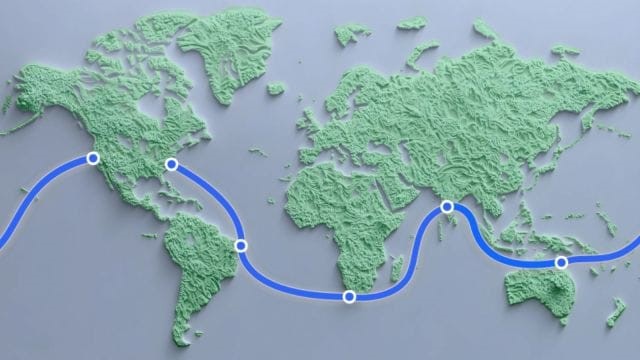
- 22 Feb 2025
In News:
Meta has launched Project Waterworth, its most ambitious subsea cable initiative to date, aimed at enhancing global digital connectivity. The project involves the deployment of AI-driven subsea cable infrastructure, with India being a key beneficiary.
Key Features:
- Massive Scale:A multi-billion dollar, multi-year global initiative, the project will lay over 50,000 km of undersea cables, connecting five continents, including India, the USA, Brazil, South Africa, and others.
- AI Integration:The project leverages advanced machine learning models to predict and mitigate network disruptions, ensuring greater resilience and reliability of global internet infrastructure.
- Deep Water Deployment:The cable will operate at depths reaching 7,000 meters, using enhanced burial techniques in high-risk areas to prevent damage from ship anchors and other maritime hazards.
- Digital Backbone:Subsea cables like those in Project Waterworth currently carry over 95% of global internet traffic, forming the backbone of international digital communication, video streaming, e-commerce, and cloud-based AI services.
Strategic Relevance for India:
- India’s Digital Push:The project supports India’s growing digital economy by ensuring faster, more reliable internet connectivity and fostering digital inclusion and innovation.
- AI and Infrastructure Synergy:With AI-driven maintenance and deployment, the initiative complements India's vision of becoming a global hub for AI, data centers, and digital services.
- Economic and Strategic Benefits:Enhanced connectivity is expected to boost economic cooperation, cross-border trade, and participation in global digital platforms.
India–Qatar Strategic Partnership
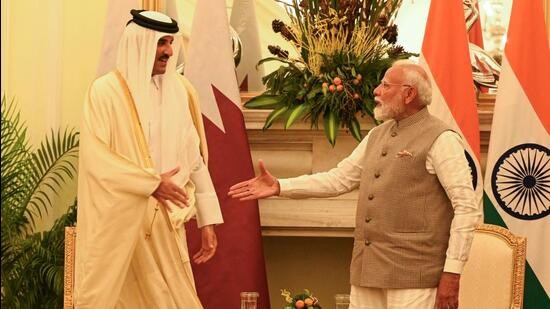
- 22 Feb 2025
In News:
In February 2025, His Highness Sheikh Tamim bin Hamad Al-Thani, Amir of Qatar, paid a State Visit to India, during which India and Qatar elevated their bilateral relations to a Strategic Partnership.
Major Outcomes of the 2025 Summit
- Strategic Partnership Agreement:Formalized multifaceted cooperation across sectors—trade, investment, energy, security, technology, and people-to-people ties.
- Trade and Economic Engagement:
- Target set to double bilateral trade to $30 billion by 2030 (from $14 billion in FY 2023–24).
- Joint Commission on Trade and Commerce established to monitor economic ties.
- Qatar Investment Authority (QIA) pledged $10 billion in Indian infrastructure, green energy, and startups.
- Revised Double Taxation Avoidance Agreement signed.
- Energy Cooperation:
- A landmark 20-year LNG supply deal (2028–2048) between QatarEnergy and Petronet LNG.
- Collaboration in renewable energy including green hydrogen, solar energy, and AI-based efficiency solutions.
- Investment and Digital Integration:
- QIA to open an office in India; Qatar National Bank to set up presence in GIFT City.
- India’s UPI system operationalized in Qatar's POS infrastructure; nationwide rollout planned.
- Technology and Innovation:
- Cooperation in AI, semiconductors, IoT, robotics and digital governance.
- Indian startups to participate in Web Summits in Doha (2024–25).
People-to-People and Cultural Ties
- Over 830,000 Indians reside in Qatar, forming the largest expatriate community.
- MoUs signed on youth, sports, education, archives, and cultural cooperation.
- Agreement to celebrate India-Qatar Year of Culture, Friendship and Sports.
Security and Counter-Terrorism
- Strong condemnation of terrorism in all forms, including cross-border terrorism.
- Commitment to enhanced cooperation in intelligence sharing, cybercrime, anti-money laundering, and countering transnational crimes.
- Emphasis on regular meetings of the Joint Committee on Security and Law Enforcement.
Labour and Health Cooperation
- Agreement to hold regular Joint Working Group on Labour and Employment to address expatriate welfare and mobility.
- Collaboration in the health sector, including pharma exports, device registration, and pandemic response mechanisms.
Geopolitical and Multilateral Cooperation
- Exchange of views on Middle East stability, UN reforms, and India-GCC engagement.
- Appreciation for Qatar’s Chairmanship of the India-GCC Strategic Dialogue (Sept 2024).
- Agreement on UN Security Council reform and advancing SDG goals through multilateralism.
Challenges Ahead
- Trade Imbalance: Imports of LNG/LPG ($12B) far exceed exports (<$2B).
- Labour Rights Concerns: Working conditions of Indian laborers in Qatar remain under scrutiny.
- Legal and Judicial Issues: Over 600 Indians in Qatari jails; need for agreement on transfer of sentenced persons.
- Geopolitical Complexities: Qatar’s involvement in West Asian diplomacy presents nuanced challenges.
- Naval Veterans Case: Pending resolution affects diplomatic sentiment.
Way Forward
- Boost Indian exports in pharmaceuticals, IT, engineering goods.
- Expedite India-Qatar Bilateral Investment Treaty (BIT) to streamline FDI.
- Expand collaboration in green hydrogen, carbon capture, and energy diversification.
- Strengthen ministerial-level engagements, labor welfare frameworks, and regional security dialogue.
NAKSHA Programme
- 22 Feb 2025
In News:
The Union Ministry of Rural Development has launched a pilot project titled NAKSHA(National Geospatial Knowledge-based Land Survey of Urban Habitations) in 152 Urban Local Bodies (ULBs) across 26 States and 3 Union Territories, with the inauguration taking place in Raisen, Madhya Pradesh.
Key Highlights:
Objective of NAKSHA
The NAKSHA initiative aims to:
- Create and update urban land records for accurate, reliable documentation of property ownership.
- Empower citizens by improving ease of access to land records.
- Facilitate urban planning and reduce land-related disputes.
- Promote transparency, efficiency, and sustainable development through an IT-based system.
Key Features
- Technical Partner: The Survey of India will carry out aerial surveys and provide orthorectified imagery via third-party vendors.
- Implementation Partners:
- Madhya Pradesh State Electronics Development Corporation (MPSEDC) will develop a web-based GIS platform.
- National Informatics Centre Services Inc. (NICSI) will provide data storage facilities.
- Execution at State Level: States and UTs will conduct field surveys and ground truthing, leading to the final publication of urban and semi-urban land records.
Kaveri 2.0 Cyberattack
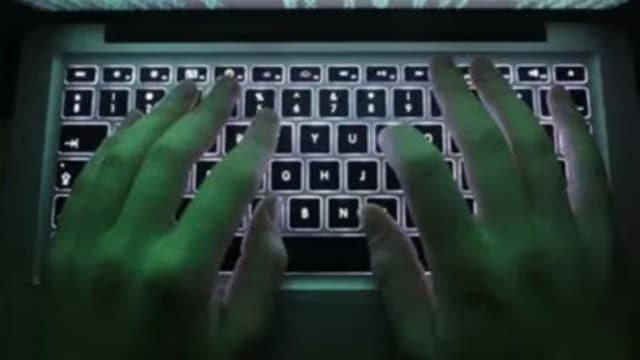
- 22 Feb 2025
In News:
In January–February 2025, Karnataka's property registration portal, Kaveri 2.0, faced major disruptions due to a Distributed Denial of Service (DDoS) attack, severely affecting property registrations and revenue generation. The portal, launched in 2023, is a key component of the state's e-governance infrastructure.
What is a DDoS Attack?
A Distributed Denial of Service (DDoS) attack aims to disrupt a server, service, or network by flooding it with excessive traffic, rendering it inaccessible to legitimate users.
How it works:
- Botnet Formation: Hackers compromise multiple devices using malware, turning them into bots.
- Traffic Overload: These bots generate huge volumes of fake traffic directed at the target system.
- Service Disruption: The targeted service slows down or crashes, affecting user access.
Types of DDoS Attacks:
- Bandwidth Saturation – Exhausting the target's internet capacity.
- Protocol Exploitation – Abusing vulnerabilities in network protocols.
- Application Targeting – Crashing specific applications or services.
Kaveri 2.0 Case: AI-Based DDoS Attack
- The Stamps and Registration Department (SRD) of Karnataka confirmed that the portal was targeted using AI tools that generated over 20 lakh fake search queries per day—far beyond its capacity of 2.5 lakh.
- These queries mainly targeted services like Encumbrance Certificate (EC) searches, causing widespread slowdown and outages.
- On February 1, only 556 property registrations occurred, compared to the usual 8,000–9,000 daily, with revenue dipping to ?15.18 crore from an average of over ?62 crore.
- After mitigation, services were restored by February 7, returning to normal levels of 7,225 registrations and ?62.59 crore in revenue.
Impact of DDoS Attacks on Public Services
- Operational Disruption: Essential citizen services are halted, creating public inconvenience.
- Financial Loss: Delayed transactions and reduced revenue, as seen in the Kaveri 2.0 case.
- Reputational Damage: Public trust in digital governance platforms may erode.
- Cybersecurity Risks: DDoS attacks can mask more sophisticated intrusions.
Preventive Measures
- Traffic Filtering: Using AI tools to detect and block abnormal traffic.
- Rate Limiting: Restricting the number of queries per user/IP.
- Bot Detection: Implementing CAPTCHAs and behavior analysis.
- Robust Authentication: Enhancing security for administrative access.
- Incident Response Teams: Dedicated cybersecurity units to respond to threats promptly.
Chief Election Commissioner Appointment
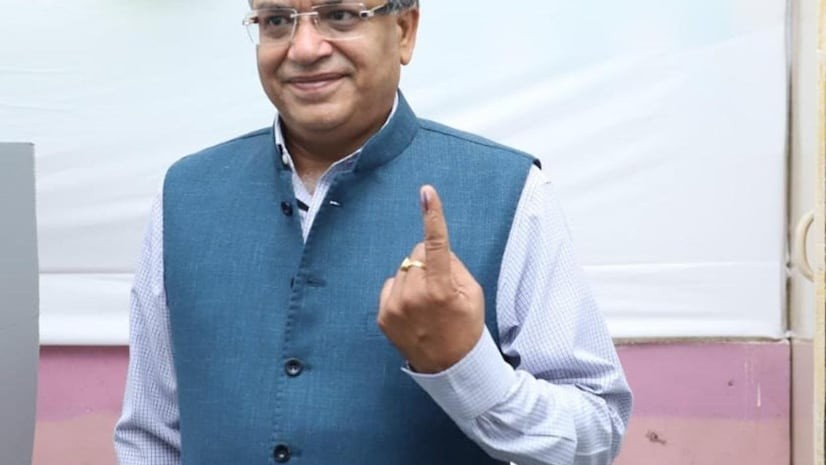
- 22 Feb 2025
In News:
Gyanesh Kumar has been appointed as the new Chief Election Commissioner (CEC) of India, becoming the first to be selected under the new legislative framework — The Chief Election Commissioner and Other Election Commissioners Act, 2023. He succeeds Rajiv Kumar. Simultaneously, Dr. Vivek Joshi, former Haryana Chief Secretary, was appointed as an Election Commissioner.
Constitutional Basis
- Article 324 of the Indian Constitution provides for the Election Commission of India (ECI), consisting of the CEC and such other Election Commissioners as the President may determine.
- It vests the superintendence, direction, and control of elections in the ECI for conducting elections to Parliament, State Legislatures, and for the offices of the President and Vice President.
Earlier Appointment Process
- Governed by convention and the Election Commission (Conditions of Service of Election Commissioners and Transaction of Business) Act, 1991.
- The CEC was appointed by the President on the advice of the Prime Minister, with no formal selection mechanism defined in law.
New Appointment Process (2023 Act)
The Chief Election Commissioner and Other Election Commissioners Act, 2023 introduced a formal selection process:
- Selection Committee:
- Prime Minister (Chairperson)
- A Union Cabinet Minister (nominated by the PM)
- Leader of Opposition (or largest opposition party leader) in the Lok Sabha
- Search Committee:
- Headed by the Cabinet Secretary, this body shortlists eligible candidates.
- Eligibility Criteria:
- Must be a person of integrity
- Must have experience in election management
- Must be or have been a Secretary (or equivalent) to the Government of India
Service Conditions (As per 2023 Act)
- Salary & Status: Equivalent to that of a Cabinet Secretary (earlier: Supreme Court judge).
- Tenure: 6 years or till the age of 65, whichever is earlier.
- Reappointment: Not permitted.
Removal Process
- CEC: Can only be removed in the same manner and on the same grounds as a Supreme Court judge (i.e., by Parliament through impeachment).
- Election Commissioners: Can only be removed on the recommendation of the CEC.
Functions & Powers of CEC
- Conducts elections to the Lok Sabha, Rajya Sabha, State Assemblies, and offices of the President & Vice President.
- Regulates political parties and election funding.
- Enforces the Model Code of Conduct (MCC).
- Maintains and updates electoral rolls and supervises the voter registration process.
- Has the authority to disqualify candidates and cancel elections in case of serious irregularities.
- Advises the President and Governors on election-related matters.
Judicial Context & Controversy
- In the Anoop Baranwal vs Union of India case, the Supreme Court ruled that the independence of the ECI must be preserved and directed that a law be enacted to define the appointment process.
- Until such legislation was passed, the Court had prescribed a selection committee comprising:
- The Prime Minister
- The Leader of Opposition in the Lok Sabha
- The Chief Justice of India (CJI)
- However, the 2023 Act excluded the CJI, replacing the judiciary with another executive appointee, raising concerns about executive dominance.
- Multiple petitions challenging the constitutionality of the Act are pending before the Supreme Court.
Pradhan Mantri Annadata Aay Sanrakshan Abhiyan (PM-AASHA)

- 21 Feb 2025
In News:
Context:
The Government of India has approved the continuation of the PM-AASHA Scheme till 2025–26, aligning with the 15th Finance Commission cycle, to strengthen farmer income security and achieve self-sufficiency in pulses production.
Overview of PM-AASHA Scheme
- Launched by: Ministry of Agriculture & Farmers’ Welfare
- Objective: To ensure remunerative prices to farmers and stabilize market prices of key crops.
- Type: Umbrella scheme combining various price support mechanisms.
Key Components
- Price Support Scheme (PSS)
- Procurement of pulses, oilseeds, and copra at Minimum Support Prices (MSP) through NAFED and NCCF.
- Covers 25% of national production, except for 100% procurement of Tur, Urad, and Masur during 2024–25 and extended for the next four years.
- Procurement is done from pre-registered farmers through State-level agencies.
- Price Deficiency Payment Scheme (PDPS)
- Farmers receive direct payments for the shortfall between the MSP and market price.
- Covers 40% of oilseed production for a duration of four months.
- Price Stabilization Fund (PSF)
- Maintains buffer stocks of pulses and onions.
- Aims to stabilize prices, prevent hoarding, and ensure affordable supply for consumers.
- Market Intervention Scheme (MIS)
- Provides price support for perishable horticultural crops.
- Covers 25% of production with direct financial transfers to farmers, not physical procurement.
Recent Developments (2025)
- Procurement Commitment:The Union Government announced 100% procurement of Tur (Arhar), Urad, and Masur under PSS for 2024–25, extended for four years, to reduce import dependence and promote self-sufficiency.
- Tur Procurement Approval:Union Agriculture Minister Shivraj Singh Chouhan approved procurement of 13.22 Lakh Metric Tonnes (LMT) of Tur for Kharif 2024–25 in 9 states:
Andhra Pradesh, Chhattisgarh, Gujarat, Haryana, Karnataka, Madhya Pradesh, Maharashtra, Telangana, and Uttar Pradesh. - Procurement Progress(as of 15 Feb 2025):
- 0.15 LMT of Tur procured from Andhra Pradesh, Karnataka, Maharashtra, and Telangana.
- 12,006 farmers have benefited so far.
- Procurement in remaining states will commence shortly.
- Central procurement is conducted by NAFED and NCCF.
UNESCO’s “Imagine a World with More Women in Science” Campaign

- 21 Feb 2025
In News:
On February 11, 2025, to mark the 10th anniversary of the International Day of Women and Girls in Science, UNESCO, with support from Canada’s International Development Centre (IDRC), launched the global campaign titled “Imagine a World with More Women in Science.”
Campaign Highlights
- Objective: Promote gender equality in science and innovation by encouraging the active participation and leadership of women in STEMM (Science, Technology, Engineering, Mathematics, and Medicine).
- Social Media Drive: The campaign uses the hashtag #EveryVoiceInScience to amplify diverse voices and encourage global engagement.
- Focus: Emphasizes the real-world impact of gender disparities in science, including missed innovations, biased artificial intelligence, and inequitable scientific opportunities.
Background
- The UN General Assembly (UNGA) declared February 11 as the International Day of Women and Girls in Science in 2015 to foster female participation in scientific research and innovation globally.
Current Status of Women in Science
Global Trends
- Representation: Women comprise only one-third of the global scientific workforce.
- Leadership Gap: Merely 10% of STEM leadership positions are held by women.
India-Specific Data
- STEMM Enrolment: Women account for 43% of enrolment in STEMM disciplines.
- Women Scientists: Only 18.6% of scientists in India are women.
- R&D Projects: About 25% of R&D projects are led by women researchers.
Challenges Faced by Women in Science
Challenge Description
Restrictive Social Norms Traditional gender roles hinder women’s
scientific pursuits.
Lack of Role Models Few visible female leaders discourage young women from
aspiring to scientific careers.
Workplace Inequality Gender biases, hostile work environments, and lack of inclusive
policies create barriers.
Educational Gaps Gender-biased teaching content and insufficient support systems
limit girls’ access to science education.
Recommended Measures
Dismantle Gender Stereotypes
- Remove gender biases from teaching and learning materials.
- Include contributions of female scientists in textbooks with visuals.
- Promote equitable representation of women in boards, panels, and decision-making bodies.
Enhance Visibility of Women Role Models
- Highlight discoveries by female scientists.
- Increase media and curriculum exposure to successful women in science.
Open Educational Pathways
- Promote inclusive teaching practices and gender-neutral curricula.
- Encourage CSR (Corporate Social Responsibility) initiatives to support girls in science education.
Create Inclusive Work Environments
- Enforce policies for diversity, equity, and inclusion.
- Take strong action against gender-based violence, including sexism and harassment in the workplace.
- Advance women into leadership roles in scientific institutions.
mRNA-Based Cancer Vaccine
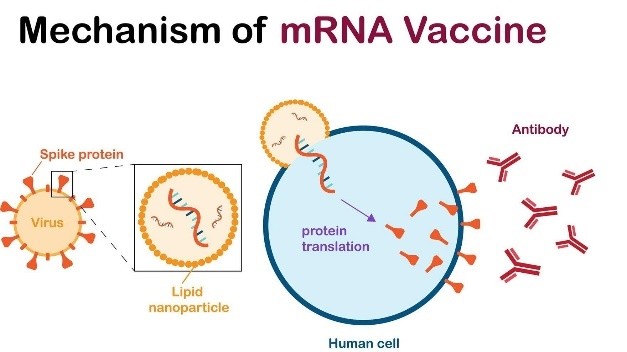
- 21 Feb 2025
In News:
Russia has announced the development of an mRNA-based personalized cancer vaccine, expected to be available free of cost to patients by early 2025. It is being developed under the Russian Ministry of Health, with pre-clinical trials showing promising results in suppressing tumour growth and metastasis.
What is an mRNA-Based Cancer Vaccine?
- mRNA (Messenger RNA) vaccines deliver genetic instructions to the body’s cells to produce antigens—proteins that trigger an immune response.
- In the case of cancer, these vaccines train the immune system to recognize and destroy tumor-specific antigens, thereby attacking cancer cells.
- Unlike conventional vaccines, these are therapeutic, not preventive, and are used in existing cancer patients.
How Does It Work?
- The vaccine prompts the body to produce proteins that mimic tumor markers.
- These markers stimulate the immune system to target and destroy cancer cells.
- The treatment is personalized, with the mRNA sequence tailored to match the unique antigens of a patient’s tumour, enhancing precision and efficacy.
- It can potentially target multiple antigens simultaneously, unlike standard mRNA vaccines such as those for COVID-19.
Advantages Over Conventional Therapies
- Selective Action: Targets only cancer cells, minimizing damage to healthy tissue.
- Fewer Side Effects: Compared to chemotherapy, the side effects are significantly reduced.
- Customizable: Can be adapted to target various cancers through tumor-specific markers.
- Boosts Immunity: Enhances the body’s natural defense mechanisms for long-term protection.
mRNA Technology – Core Concepts
- mRNA is a single-stranded RNA transcribed from DNA.
- It delivers genetic instructions to ribosomes (protein factories) in cells to produce specific proteins.
- In mRNA vaccines, this mechanism is harnessed to make the body generate target antigens, which the immune system learns to combat.
India and mRNA Vaccines
- India has approved two mRNA COVID-19 vaccines developed by Gennova Biopharmaceuticals with DBT-BIRAC support:
- GEMCOVAC-OM(Omicron-specific)
- GEMCOVAC-19
- Features include needle-free delivery and thermostability, marking India’s entry into mRNA-based immunotherapy platforms.
Cautions and Limitations
- Not Preventive: These are not preventive like HPV or Hepatitis B vaccines, which protect against cancers linked to viruses.
- Limited Data: Russian vaccine data is not yet publicly available; clinical validation is pending.
- Not Universally Effective: Immunotherapy may not work for all types or stages of cancer.
- Time-Consuming Trials: New treatments must undergo phased trials, often spanning years, before general approval.
AI-Powered Surveillance in Similipal Tiger Reserve
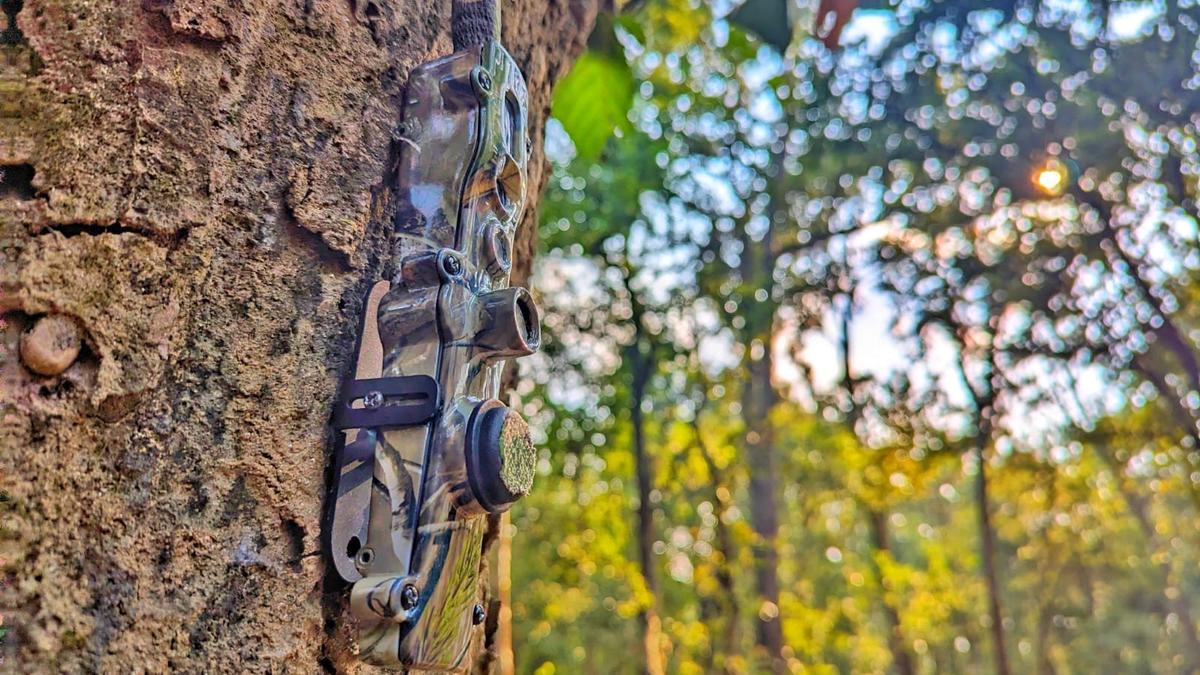
- 21 Feb 2025
In News:
The Similipal Tiger Reserve in Odisha has seen a significant drop in poaching activities following the deployment of TrailGuard AI-enabled surveillance cameras. These advanced systems are helping protect both forest personnel and wildlife by providing real-time alerts and enhancing enforcement actions.
About TrailGuard AI System
- Developed by: Nightjar Technologies, Gurgaon.
- Design:
- Two-part system: a pen-sized camera unit and a notepad-sized battery/communication unit connected via a 2-metre cable.
- Camouflaged and compact, reducing chances of being detected or stolen.
- Operation:
- Operates in low-power mode by default, switches to high-power mode upon sensing movement.
- Uses on-device AI inference to identify object classes (e.g., humans, animals, vehicles).
- Sends alerts via cellular network within 30–40 seconds to a central control room.
- Battery life: 6 months to 1 year.
- Cost: ?50,000–53,000 per unit.
Impact and Achievements
- Installed: 100–150 AI-enabled cameras in Similipal.
- In 10 months, led to:
- 96 poachers arrested
- 86+ country-made guns seized
- 40+ arrests in December 2024 alone
- Enabled quick house raids and identifications using photographic evidence.
- Enabled one conviction within six months, with more expected.
Integrated Enforcement System
- Real-time alerts displayed on a central control room screen.
- Information shared swiftly via WhatsApp groups and VHF radio.
- Ground teams rely on human intelligence sources (including undercover staff) to identify suspects.
- Raids and arrests are executed only after 100% identity confirmation, ensuring due process.
Advantages of the System
- Enhances forest ranger safety.
- Enables targeted and proactive patrolling.
- Effective in challenging terrains with minimal maintenance.
- Also used to monitor wildlife, including profiling of tuskers.
- Functions as an anti-poaching as well as human-wildlife conflict mitigation tool.
Wider Adoption and Future Plans
- Apart from Similipal, TrailGuard AI has been deployed at:
- Kanha Tiger Reserve, Madhya Pradesh (20 cameras)
- Dudhwa National Park, Uttar Pradesh (10 cameras)
- Total: Active in 14+ sites across five states
- Planned expansion to other protected areas in Odisha.
Community Sensitivity and Tribal Engagement
- Similipal is surrounded by tribal communities, where hunting has traditional roots.
- Increased surveillance has caused concerns over restricted forest access for collecting firewood and non-timber forest products.
- The forest department is:
- Holding awareness meetings in local languages.
- Exploring safe and non-intrusive access solutions for villagers.
- Ensuring that enforcement doesn’t indiscriminately impact local livelihoods.
Conservation Significance
- Demonstrates the fusion of technology with conservation.
- Aligns with India’s broader environmental goals under:
- Project Tiger
- National Wildlife Action Plan
- Digital India initiatives in conservation.
Exercise Komodo

- 21 Feb 2025
In News:
The Indian Navy's platforms—INS Shardul, an amphibious warfare ship, and the P-8I Long Range Maritime Surveillance Aircraft—participated in the International Fleet Review (IFR) 2025 and the 5th edition of the Multilateral Naval Exercise Komodo held in Bali, Indonesia, from 15 to 22 February 2025.
International Fleet Review (IFR) 2025
- IFR 2025 is a prestigious multinational naval event reviewed by the President of Indonesia.
- Participating nations showcased naval assets including warships, helicopters, and maritime aircraft.
- The Indian Navy took part in:
- International Maritime Security Symposium
- Tactical floor games
- City parade
- Coral and mangrove plantation
- Beach cleaning activities
- Baby turtle release, promoting environmental and maritime sustainability.
Exercise Komodo 2025
- Initiated in 2014, Exercise Komodo is a non-combat multilateral naval exercise hosted by the Indonesian Navy.
- The 2025 edition had the theme: "Maritime Partnership for Peace and Stability".
- Objectives:
- Promote maritime cooperation
- Enhance interoperability
- Foster regional security cooperation
- Key Features:
- Participation from 39 countries
- Involvement of 34 foreign and 18 Indonesian Navy warships
- Included:
- Naval exercises
- Officer exchange forums
- Bilateral naval meetings
- Defense exhibition
- Cultural parades
Strategic Context and Bilateral Engagements
- The participation builds upon the Indian Navy’s involvement in the La Pérouse exercises in Indonesia (January 2025) involving INS Mumbai and a P-8I aircraft.
- It coincided with the visit of Admiral Muhammad Ali, Chief of Staff of the Indonesian Navy, to India during the Republic Day 2025, accompanying President Prabowo Subianto as the Chief Guest.
Significance for India
- The participation reaffirms India’s commitment to SAGAR (Security and Growth for All in the Region).
- It strengthens India-Indonesia defense ties and underscores India's proactive role in regional maritime diplomacy and environmental stewardship.
Gravehawk Hybrid Air Defense System
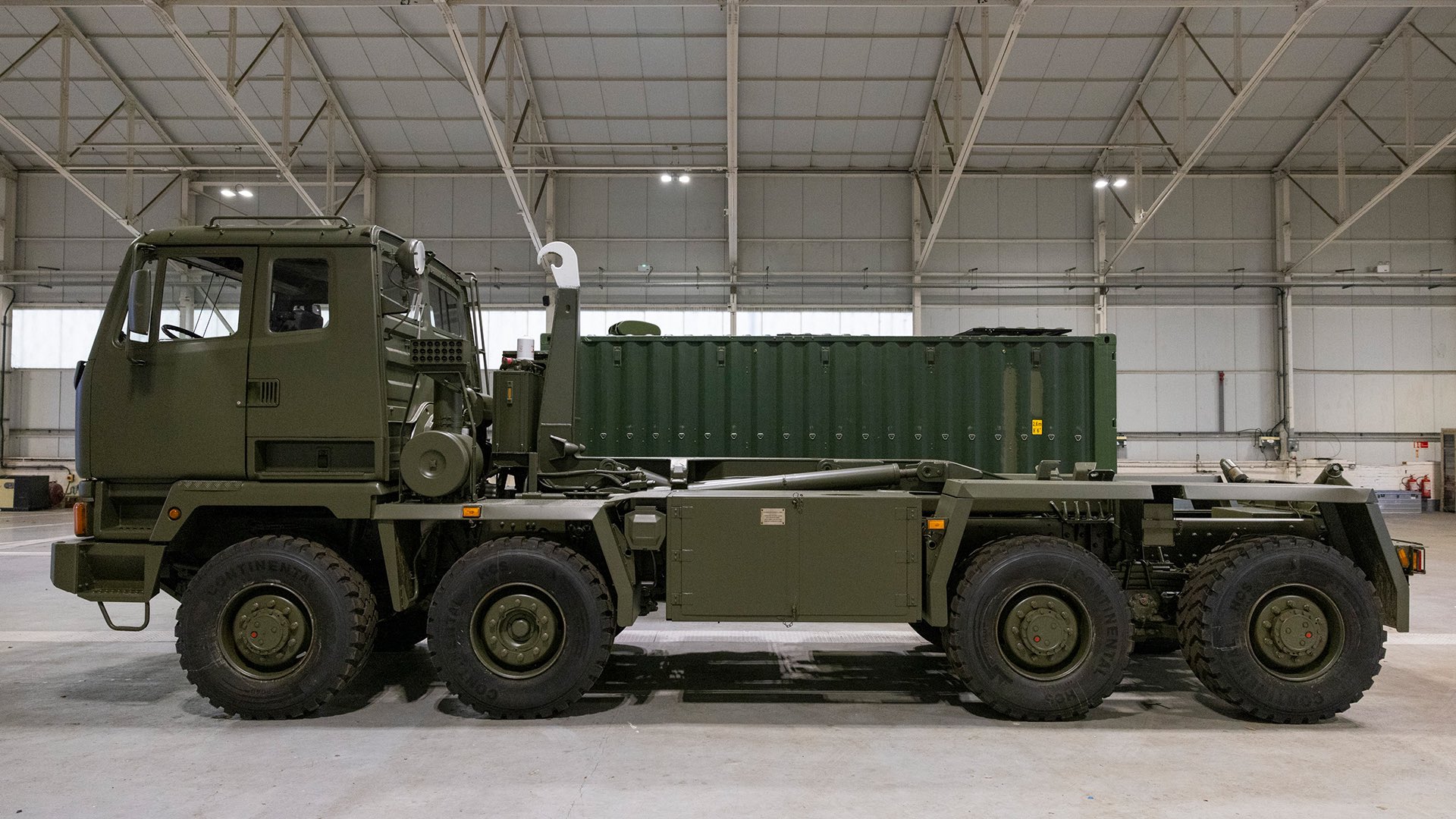
- 20 Feb 2025
In News:
The Gravehawk is a newly developed mobile surface-to-air missile (SAM) system, introduced by the United Kingdom in collaboration with Denmark, to bolster Ukraine's defenses against Russian aerial threats. This innovative hybrid system exemplifies the modern trend in NATO of repurposing existing missile technology to build flexible, cost-effective, and rapidly deployable air defense platforms.
Overview and Development
- The Gravehawk system is designed to counter short-range aerial threats such as drones, cruise missiles, and low-flying aircraft.
- It combines Western and Soviet-era missile technologies, providing Ukraine with a unique edge in a contested aerial environment.
- The United Kingdom, in partnership with Denmark, is actively delivering these systems to Ukraine, with 15 additional units expected in the coming months.
- The cost per system is approximately USD 1.25 million, with Denmark covering 50% of the expense.
Key Features and Technical Capabilities
- Missiles Used: The system utilizes infrared-guided missiles including the AIM-132 ASRAAM (Advanced Short Range Air-to-Air Missile) and the Soviet-origin R-73 (AA-11 Archer).
- Guidance System: Both missiles employ passive infrared (IR) seekers, allowing them to track heat signatures of targets without emitting radar signals, thereby reducing vulnerability to electronic warfare (EW) detection.
- Speed and Range: Missiles can reach speeds of up to Mach 2.5 and engage targets at distances of approximately 12 miles (about 19 km).
- R-73 Specifics: Originally developed for close-range dogfights, the R-73 is highly maneuverable, capable of tracking targets up to 40 km ahead and 300 meters behind, with off-boresight targeting up to 40 degrees.
- Mobility: Mounted on all-terrain Drops vehicles, the system offers rapid ground mobility and deployment flexibility.
- Containerized Launch Platform: Housed in ISO-standard shipping containers, the system’s roof rolls back to expose two missile rails—repurposed from Soviet-era fighters like the Sukhoi Su-27.
- Crew and Operation: Operated by a five-member crew, the system incorporates electro-optical and infrared targeting cameras, enabling remote operation and safe standoff missile launches.
Strategic Relevance for Ukraine
- Ukraine’s acquisition of the Gravehawk system marks a significant advancement in its air defense capabilities, particularly in the face of persistent Russian air and missile attacks.
- It enhances short-range interception capacity, allows for quick reaction deployment, and reduces dependence on continuous NATO resupplies. Additionally, the system’s use of widely available R-73 missiles ensures operational sustainability.
- The Gravehawk is part of a broader effort to field "hybrid systems", where older missile stocks are integrated into modern platforms.
- Other such initiatives include FrankenSAM programs developed by the U.S. and UK, where systems like ASRAAM have been adapted to ground-based launchers.
- Ukraine has also employed R-73 missiles on drone boats and unmanned surface vessels to target Russian air assets, showcasing the multi-domain applicability of these munitions.
Prime Minister’s Yoga Awards 2025

- 20 Feb 2025
In News:
The Ministry of Ayush has officially opened nominations for the Prime Minister’s Yoga Awards 2025, which will be conferred on the occasion of the International Day of Yoga (IDY) 2025. These prestigious awards aim to honour individuals and organizations that have made exceptional and sustained contributions to the promotion and development of Yoga at both national and international levels.
Background and Objective
Instituted by the Government of India and endorsed by the Hon’ble Prime Minister, the awards recognize Yoga’s vital role in:
- Health promotion
- Disease prevention
- Management of lifestyle-related disorders
The initiative reflects the government’s broader vision to acknowledge and encourage meaningful contributions in advancing Yoga as a holistic system of well-being and preventive healthcare.
Award Categories and Benefits
The awards will be presented in the following four categories:
- National Individual
- National Organization
- International Individual
- International Organization
Each awardee will receive:
- A Trophy
- A Certificate of Recognition
- A Cash Prize of ?25 lakh
Eligibility Criteria
- Individual applicants must be 40 years or older.
- They should possess a minimum of 20 years of committed work in promoting Yoga.
- Organizations must have a proven track record in the field of Yoga development and outreach.
Applicants or nominees can apply for only one category (either National or International) in a given year. Applications can be submitted directly by individuals/entities or through nominations made by recognized Yoga institutions.
Application and Submission Process
- Nominations and applications are to be submitted through the MyGov platform:
https://innovateindia.mygov.in/pm-yoga-awards-2025/ - The link is also accessible on the Ministry of Ayush website and those of its autonomous bodies.
- The deadline for submission is March 31, 2025.
Selection Procedure
The award process involves two key stages:
- A Screening Committee formed by the Ministry of Ayush will evaluate all entries and recommend a maximum of 50 nominations per category.
- These shortlisted names will be reviewed by a high-level Evaluation Jury comprising eminent personalities from diverse fields, which will serve as the final decision-making body.
Significance of the Initiative
The Prime Minister’s Yoga Awards not only celebrate excellence in Yoga but also further the objectives of initiatives like Fit India Movement, Ayushman Bharat, and the mainstreaming of traditional Indian wellness systems.
The awards are a key element of the Ministry of Ayush’s broader mandate to integrate traditional systems such as Ayurveda, Yoga & Naturopathy, Unani, Siddha, Sowa-Rigpa, and Homeopathy into the healthcare ecosystem of India.
Exercise Dharma Guardian 2025

- 20 Feb 2025
In News:
The 6th edition of Exercise Dharma Guardian, a joint annual military exercisealternately hosted in India and Japan since 2018is scheduled from February 25 to March 9, 2025, at Mount Fuji, Japan.
Key Highlights:
Objectives:
- Strengthen Bilateral Defence Relations: Enhances military diplomacy under the India–Japan Special Strategic and Global Partnership.
- Promote Interoperability: Develops joint operational capabilities and tactical synergy in line with UN peacekeeping mandates (Chapter VII).
- Urban and Semi-Desert Warfare: Trains troops in counter-terrorism operations and urban combat scenarios.
- Regional Stability: Supports the Indo-Pacific security architecture and complements Quad defence objectives (India, Japan, US, Australia).
Key Features of Dharma Guardian 2025
- Advanced Tactical Training: Close-quarter battle drills, live-fire exercises, battlefield medical evacuation.
- Joint Counter-Terror Operations: Conducted under UN charter guidelines for multinational cooperation.
- 48-hour Validation Exercise: Simulated real-time combat for assessing operational readiness and coordination.
- ISR and Tactical Mobility Drills: Involves establishing temporary operating bases, ISR (Intelligence, Surveillance, Reconnaissance) grids, mobile vehicle checkpoints, and heliborne insertions.
- House Intervention & Search Operations: Practical training for securing urban areas against militant threats.
- Weapons & Equipment Display: Demonstrates India’s growing defence manufacturing under the Atmanirbhar Bharat initiative.
Mount Fuji – Host Site
- Geographical Significance: Japan’s highest peak at 3,776.24 meters, located 100 km southwest of Tokyo.
- Cultural Importance: Recognized as a UNESCO World Heritage Site (2013) and revered as one of Japan’s “Three Holy Mountains.”
- Training Terrain: Its stratovolcanic landscape provides a realistic backdrop for high-altitude and rugged terrain operations.
Related India-Japan Military Exercises
India and Japan conduct a wide spectrum of bilateral and multilateral defense exercises across all services:
Exercise Name Service Branch Focus Area
Dharma Guardian Army Land-based counter-terror and urban warfare
JIMEX Navy Naval interoperability and maritime security
Malabar (Quad) Navy (Multilateral) Naval drills with US and Australia
Veer Guardian Air Force Air combat tactics and coordination
ShinyuuMaitri Air Force Air mobility and humanitarian operations
Aero India 2025
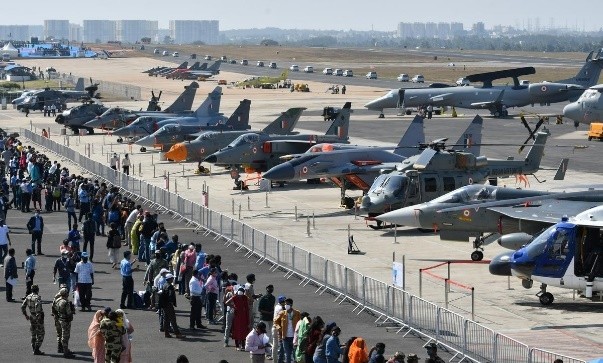
- 20 Feb 2025
In News:
Aero India 2025, the 15th edition of Asia's largest biennial airshow, is scheduled to take place from February 10 to 14, 2025, at the Air Force Station, Yelahanka, in Bengaluru, Karnataka.
Organized by the Defence Exhibition Organisation under the Ministry of Defence, with support from HAL, DRDO, and the Indian Air Force, the event showcases India's growing prowess in aerospace, aviation, and defense technologies.
Key Highlights:
Edition: 15th (First held in 1996; originally Avia India in 1993)
Theme: “The Runway to a Billion Opportunities”
Conclave Theme: “BRIDGE – Building Resilience through International Defence and Global Engagement”
Objectives and Significance
- Promote Indigenous Manufacturing: In alignment with ‘Make in India’ and ‘Atmanirbhar Bharat’, the show promotes domestic aerospace and defense production.
- Showcase Technological Advancements: Cutting-edge systems including fighter jets, helicopters, UAVs, and AI-integrated defense solutions will be exhibited.
- Encourage Global Partnerships: Facilitates joint ventures, MoUs, and technology transfers between Indian and foreign defense firms.
- Boost Strategic Diplomacy: A platform for global defense ministers, CEOs, and military leaders to foster bilateral and multilateral defense ties.
- Stimulate Investment: Attracts FDI and international contracts in India’s defense sector.
Key Events
- Live Aerial Displays: Aerobatic performances by combat aircraft, helicopters, and elite teams like Surya Kiran.
- Defense Ministers’ Conclave: Deliberations on enhancing international defense cooperation.
- CEO Roundtable: Industry leaders discuss emerging trends and investment prospects.
- Manthan/iDEX Pavilion: Showcasing start-up innovations in defense and aerospace.
- India Pavilion: A dedicated zone for indigenous defense production and capabilities.
- International Seminar (Feb 8–9): Focused on Futuristic Aerospace Technologies and related R&D challenges.
Strategic Role of Aero India
Aero India plays a pivotal role in:
- Supporting Medium Multi-Role Combat Aircraft (MMRCA) procurements.
- Demonstrating India's readiness as a global defense manufacturing hub.
- Enhancing India’s geopolitical standing by fostering defense diplomacy through multilateral engagement.
Climate Risk Index 2025
- 19 Feb 2025
In News:
- The Climate Risk Index (CRI) 2025, published by the international environmental think tank Germanwatch, ranks countries based on their vulnerability to extreme weather events, assessing both human and economic losses due to climate-induced disasters.
- The index, which has been released annually since 2006, covers a 30-year period, evaluating the impact of extreme weather events in terms of economic losses, fatalities, and the number of affected people.
Key Findings:
- Global Impact: From 1993 to 2022, more than 9,400 extreme weather events occurred globally, resulting in 765,000 fatalities and USD 4.2 trillion in economic losses. Heatwaves, droughts, and floods were the leading causes of fatalities and displacement, with heatwaves alone claiming 61,778 lives (83% of fatalities) in 2022. Droughts affected the largest number of people, with 59% of the global population impacted during the past three decades.
- India's Position: India ranks as the 6th most affected country in the world by climate change between 1993 and 2022, suffering significant losses. During this period, the country experienced over 400 extreme weather events, including floods, heatwaves, cyclones, and droughts, causing a loss of USD 180 billion in economic damages and leading to at least 80,000 fatalities (10% of global deaths).
Some notable extreme weather events include:
-
- Cyclones: Gujarat (1998), Odisha (1999), Hudhud (2014), and Amphan (2020).
- Floods: Uttarakhand (2013), Jammu and Kashmir (2014), and Kerala (2018).
- Heatwaves: Intense temperatures exceeding 50°C in 1998, 2002, 2003, and 2015.
Methodology of the Climate Risk Index
The CRI assesses the impact of extreme weather events across three hazard categories:
- Hydrological (floods, landslides),
- Meteorological (storms, cyclones),
- Climatological (heatwaves, droughts).
The six key indicators used for the ranking are:
- Economic loss
- Fatalities
- Affecting population, assessed in both absolute and relative terms.
Climate Risk and Its Implications for India
India’s vulnerability to climate change is highlighted by frequent and intense extreme weather events. The country faces risks from:
- Floods: Regular heavy monsoons lead to significant displacement and damage to infrastructure and agriculture.
- Cyclones: Rising sea levels and warming oceans increase the frequency and intensity of cyclones.
- Heatwaves: India experiences rising temperatures, with heatwaves becoming more intense, contributing to health crises.
- Droughts: A growing concern, affecting agriculture and water resources.
Additionally, the Asia-Pacific Climate Report 2024 projects that India may face a 24.7% GDP loss by 2070 due to climate change impacts, driven by rising sea levels and decreasing labor productivity.
Global Challenges in Climate Change Mitigation
- Historical Responsibility vs. Future Emissions: Developed nations, despite having contributed more to global emissions historically, are pressuring emerging economies like India to take greater responsibility for climate action. This has led to tensions over burden-sharing and the need for climate finance.
- Global Temperature Breach: In 2024, the world breached the 1.5°C threshold for a full year, highlighting the inadequacy of current mitigation efforts. Projections indicate a global temperature increase of 2.6-3.1°C by 2100 if current trends continue.
- Weak Commitments and Insufficient Finance: Many countries have not updated their Nationally Determined Contributions (NDCs), and the USD 300 billion annual funding promised for developing nations is insufficient to meet climate adaptation and mitigation needs.
India's Climate Adaptation Challenges and Suggestions
India faces several climate adaptation challenges, including inadequate infrastructure, insufficient funding, and a lack of robust policy frameworks for disaster risk management. To enhance adaptation efforts, the following measures are suggested:
- Enhanced Climate Finance: Developing countries need greater financial and technical support to manage and adapt to climate-induced losses.
- Strengthening Mitigation Efforts: Nations, including India, must scale up their NDCs to restrict global warming to 1.5°C or lower.
- Accountability of High-Income Countries: Developed nations must expedite mitigation actions and increase financial contributions to support climate-vulnerable countries like India.
National Skill Development Corporation (NSDC)

- 19 Feb 2025
In News:
The National Skill Development Corporation (NSDC) has announced plans to establish 50 Future Skills Centres (FSCs) and 10 NSDC International Academies to enhance skill development and improve workforce readiness in India. This initiative aims to address the country's growing demand for skilled professionals, particularly in emerging technologies and international markets.
About NSDC
- NSDC is a not-for-profit public limited company set up to promote skill development across India.
- It operates under the Ministry of Skill Development & Entrepreneurship (MSDE).
- Established on July 31, 2008, NSDC was founded as a Public-Private Partnership (PPP) under Section 25 of the Companies Act, 1956 (now Section 8 under the 2013 Act).
- The corporation operates with a 49% government stake and 51% private sector participation, ensuring a balanced approach to skill development through public and private sector collaboration.
Key Objectives of NSDC
- Bridging the Skill Gap: NSDC aims to fill the gap between industry requirements and the available workforce by providing industry-relevant training. This enhances workforce employability and supports the growth of the Indian economy.
- Financial Support for Enterprises: NSDC provides funding and concessional loans to enterprises, start-ups, and training organizations to expand their operations and develop a skilled workforce.
- Skilling the Workforce for Emerging Technologies: The corporation focuses on upskilling individuals in emerging technologies to make them market-ready.
Key Functions of NSDC
- Skill Development & Training: NSDC provides vocational training and certification across emerging technologies to align the workforce with current industry needs, ensuring that individuals are equipped with the necessary skills to succeed in the job market.
- Apprenticeship & Job Training: Under the National Apprenticeship Promotion Scheme (NAPS), NSDC trains around 5 million apprentices by disbursing ?100,250 million for skill-based learning, giving them hands-on experience and industry exposure.
- Digital & Remote Skilling: Through the Skill India Digital Hub (SIDH), NSDC offers over 7,100 courses in 23 languages, catering to 30 crore candidates. These online courses provide accessibility to skill development programs across the country, particularly for individuals in remote and rural areas.
- Job & Career Support: NSDC runs JobX, a platform that connects job seekers with potential employers. This platform offers services such as resume building, career coaching, and placement assistance, having already supported 4 million candidates in securing jobs.
New Initiatives by NSDC
To further strengthen India’s skill ecosystem, NSDC is establishing 50 Future Skills Centres (FSCs) and 10 NSDC International Academies. These initiatives will focus on:
- Future Skills Centres: These centers will offer training in emerging fields such as artificial intelligence, data science, cybersecurity, and robotics, ensuring that India's workforce is prepared for future job markets.
- International Academies: The academies will focus on global skill standards and international certifications, enhancing the employability of Indian workers in global markets.
Gulf of Eilat
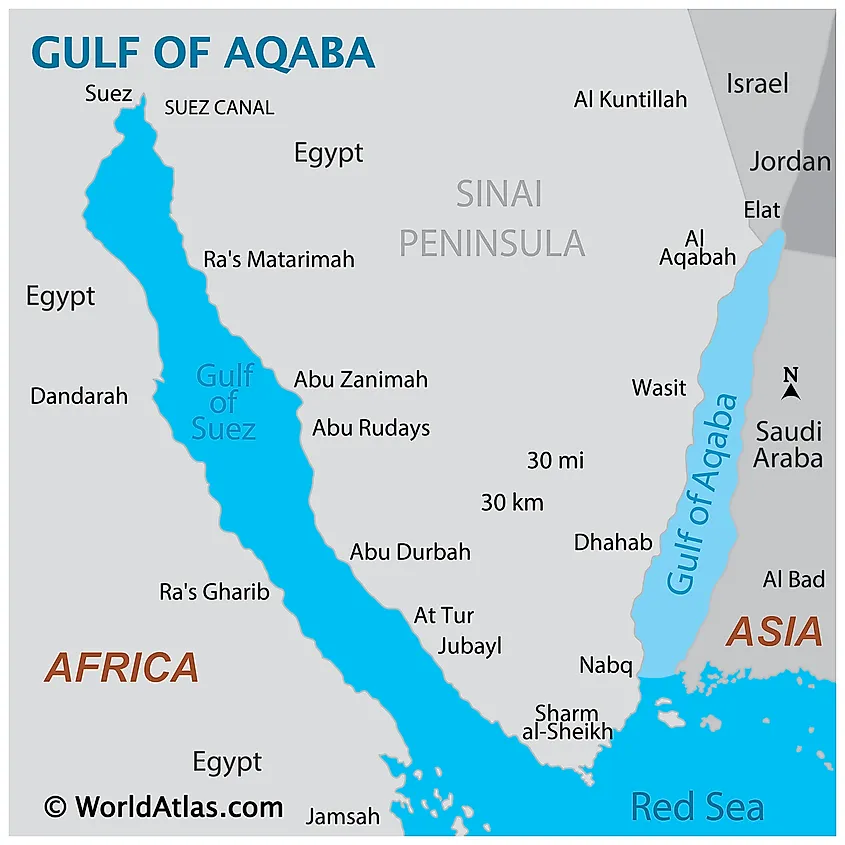
- 19 Feb 2025
In News:
A new study has revealed that the coral reefs in the Gulf of Eilat (also known as the Gulf of Aqaba) faced a 3,000-year growth shutdown due to global cooling. However, these reefs later recovered naturally from deeper waters, demonstrating resilience in the face of environmental changes.
About the Gulf of Eilat (Gulf of Aqaba)
- Location: The Gulf of Eilat is a northern extension of the Red Sea, positioned east of the Sinai Peninsula and west of the Arabian Peninsula. It is strategically significant and is also known as the Gulf of Aqaba.
- Neighbouring Nations: The Gulf shares its coastline with four countries: Egypt, Israel, Jordan, and Saudi Arabia.
- Geographical Features:
- The Gulf includes important cities like Taba (Egypt), Eilat (Israel), and Aqaba (Jordan), all located at the Gulf’s northernmost point.
- It has a maximum depth of 1,850 meters, making it much deeper than the adjacent Gulf of Suez.
- The Gulf forms the southern end of the Dead Sea Transform, a significant tectonic fault zone, contributing to its unique geological and environmental features.
- Coral Ecosystem: The Gulf of Eilat is home to the world’s northernmost coral reefs. Despite facing various environmental challenges, these reefs have shown remarkable resilience over the years, highlighting their ability to adapt to changing conditions.
Environmental Challenges and Recovery
- The 3,000-year growth shutdown of the coral reefs in the Gulf of Eilat was primarily driven by global cooling. This climatic phenomenon significantly impacted the growth of the reefs, causing a temporary halt in their development. However, the coral ecosystems in the Gulf have since recovered naturally, drawing from deeper waters to rebuild and thrive once again.
- This recovery underscores the resilience of coral ecosystems despite adverse environmental conditions. It also provides valuable insights into how these ecosystems can recover when given the opportunity, even after significant disruptions caused by global climate changes.
Implications for Coral Reef Conservation
- The study's findings emphasize the importance of understanding the adaptive capacity of coral reefs, which are among the most vulnerable ecosystems to climate change.
- The ability of coral reefs in the Gulf of Eilat to recover after a prolonged period of cooling demonstrates that marine ecosystems can endure long-term environmental stress if they are allowed to regenerate naturally.
- This has significant implications for global coral conservation efforts, which must focus on creating conditions that allow reefs to adapt and recover from environmental stresses, including global warming, ocean acidification, and pollution.
- The Gulf of Eilat’s coral reefs provide an important case study for understanding ecological resilience and the potential for natural recovery in marine ecosystems.
NAMASTE Scheme

- 19 Feb 2025
In News:
The National Action for Mechanized Sanitation Ecosystem (NAMASTE) scheme, launched by the Government of India, aims to empower sanitation workers, particularly Sewer and Septic Tank Workers (SSWs), also known as SafaiMitras.
Key Highlights:
- It focuses on ensuring their dignity, safety, and economic empowerment, while promoting the mechanization of sanitation processes.
- The scheme is designed to address the challenges faced by these workers, who are often exposed to hazardous conditions.
Objectives of the NAMASTE Scheme
The primary objectives of the NAMASTE scheme include:
- Formalization of sanitation work and enhancing occupational safety.
- Promotion of mechanized cleaning techniques to reduce manual interventions.
- Providing personal protective equipment (PPE) and other safety devices to workers.
- Ensuring economic and social empowerment of sanitation workers.
Implementing Agencies and Timeline
- The NAMASTE Scheme is implemented by the Ministry of Social Justice and Empowerment (MoSJE) and the Ministry of Housing and Urban Affairs (MoHUA).
- The scheme is executed by the National SafaiKaramcharis Finance and Development Corporation (NSKFDC), under MoSJE.
- The scheme is scheduled for implementation from FY 2023-24 to 2025-26, with a target group comprising sewer workers, septic tank workers, and waste pickers (the latter being added in 2024).
Key Initiatives Under NAMASTE
- Distribution of PPE Kits: Under the scheme, PPE kits are provided to sanitation workers to safeguard them from health hazards, especially while working in unsafe environments like sewer lines and septic tanks. These kits include masks, gloves, goggles, face shields, gowns, and shoe covers.
- Ayushman Health Cards: Ayushman Bharat Pradhan Mantri Jan Arogya Yojana (AB-PMJAY) health cards are distributed to SSWs under the scheme. These cards enable workers to access cashless healthcare at empaneled hospitals, ensuring that sanitation workers receive timely medical attention without financial burden.
- Capacity Building and Training: The scheme promotes capacity building for SSWs through training programs on safety protocols, mechanized cleaning processes, and the use of modern sanitation technologies. This helps improve the efficiency and safety of their work, while also reducing manual handling.
- Promoting Mechanization: To reduce the hazardous practice of manual scavenging, the scheme focuses on providing mechanized equipment to enhance sanitation operations and create safer working conditions for workers.
Surge in Colorectal Diseases in India
- 19 Feb 2025
In News:
In recent years, India has witnessed a marked increase in colorectal diseases, including colorectal cancer, Inflammatory Bowel Disease (IBD), Irritable Bowel Syndrome (IBS), and other related disorders. This surge is closely linked to urbanization, dietary transitions, sedentary lifestyles, and improved diagnostic practices.
What are Colorectal Diseases?
Colorectal diseases affect the colon and rectum and encompass a spectrum of conditions:
- Colorectal Cancer: Originates from polyps in the colon or rectum. If untreated, these polyps can turn malignant. The incidence of colorectal cancer is rising rapidly in Indian urban centers, now ranking among the top cancers in cities.
- Inflammatory Bowel Disease (IBD): A chronic condition involving inflammation of the digestive tract, especially the colon and small intestine. Subtypes include Crohn’s disease and ulcerative colitis. Once rare in India, IBD is now on the rise due to industrialization, Western diets, and enhanced medical diagnostics.
- Irritable Bowel Syndrome (IBS): A non-inflammatory, functional bowel disorder marked by abdominal pain, bloating, and altered bowel habits (constipation or diarrhea) without visible bowel damage. IBS is highly prevalent in India.
- Diverticular Disease: Characterized by the formation of small pouches (diverticula) in the colon wall. Inflammation or infection of these pouches leads to complications and discomfort.
- Hemorrhoids and Anal Fissures: Swollen veins or tears in the rectal region, leading to pain, bleeding, and itching—often caused by hard stools or chronic constipation.
Why are these diseases increasing?
- Dietary Shifts: Increased intake of processed foods, red meat, and low-fiber diets (lacking fruits and vegetables) have significantly raised the risk of colorectal cancer and other digestive disorders.
- Physical Inactivity: Sedentary behavior, especially in urban populations, heightens susceptibility to these conditions.
- Rising Obesity: Obesity, closely associated with lifestyle disorders, is a contributing factor for colorectal cancer and IBS.
- Ageing Population: Risk increases with age, and India’s growing elderly demographic intensifies disease burden.
- Genetic and Lifestyle Factors: A family history of colorectal conditions, coupled with habits like smoking and alcohol consumption, further elevate risk levels.
- Gut Microbiota Disruption: Imbalance in gut bacteria and possible infections are emerging as factors in the etiology of IBD; ongoing research aims to establish clearer links.
Common Symptoms
- Persistent changes in bowel habits: constipation, diarrhea, or narrow stools.
- Rectal bleeding: presence of bright red or dark blood in the stool.
- Abdominal pain, bloating, or cramps.
- Unexplained weight loss.
- Chronic fatigue and weakness.
- Sensation of incomplete bowel emptying.
Diagnosis
- Physical Examination and clinical history evaluation.
- Stool Tests for blood, infections, or abnormalities.
- Colonoscopy (gold-standard diagnostic tool) to inspect the colon and collect biopsies.
- Sigmoidoscopy for lower colon and rectum.
- Imaging: CT, MRI, or X-rays to detect abnormalities.
- Blood Tests to assess inflammation and exclude other conditions.
Treatment Modalities
- Medication: Anti-inflammatory drugs (for IBD), antibiotics, pain relief, and symptom-specific treatments.
- Lifestyle Interventions: High-fiber diets (for IBS, diverticulitis), regular physical activity, and stress reduction.
- Surgery: Required in advanced cases of colorectal cancer or severe IBD/diverticular disease.
- Chemotherapy and Radiation Therapy: Used post-operatively or in advanced malignancies.
- Targeted Biological Therapies: Including monoclonal antibodies for immune modulation in IBD.
Mount Etna Eruption 2025

- 18 Feb 2025
In News:
On February 12, 2025, Mount Etna, Europe's tallest and most active volcano, erupted once again, spewing lava flows and dense ash clouds into the atmosphere. The event drew attention not just due to its visual spectacle, but also because of the geological, environmental, and socio-economic implications it carries.
About Mount Etna
- Location: Eastern coast of Sicily, Italy — the largest island in the Mediterranean Sea.
- Type:Active stratovolcano, known for frequent eruptions.
- Height & Size: Highest peak south of the Alps and tallest active volcano in Europe; rises over 3,300 meters and covers 1,190 sq. km with a basal circumference of 140 km.
- Tectonic Setting: Lies above the convergent boundary of the African and Eurasian tectonic plates, making it a hotspot for seismic and volcanic activity.
- Eruption History: Recorded to have erupted over 200 times since 1500 BCE, with persistent volcanic activity.
- UNESCO Recognition: Declared a UNESCO World Heritage Site in 2013 for its exceptional geological features, cultural relevance, and continuous scientific monitoring.
- Decade Volcano Status: Designated a Decade Volcano by the United Nations due to its proximity to densely populated areas, including the city of Catania, and the potential risk it poses, warranting special scientific attention.
Dokra Artwork

- 18 Feb 2025
In News:
During a recent diplomatic visit, Prime Minister Narendra Modi gifted French President Emmanuel Macron and the First Lady symbolic Indian artifacts — a Dokra artwork and a silver hand-engraved mirror — showcasing India’s rich heritage of tribal and fine metal craftsmanship.
Key Highlights:
Dokra Art: A Living Tradition
- Dokra, also known as Dhokra, is a non-ferrous metal casting craft that employs the lost-wax technique, practiced for over 4,000 years.
- It is predominantly practiced by Ojha metalsmiths and DhokraDamar tribes, across Chhattisgarh, Jharkhand, Odisha, West Bengal, and Telangana.
- Notable for its seamless brass sculptures, each Dokra artifact is cast using a single-use clay and wax mould, ensuring that no two pieces are identical.
- Dokra items include figurines, utensils, jewelry, and religious motifs, often reflecting tribal life and nature.
Historical Significance:
- The “Dancing Girl” of Mohenjo-Daro (from the Harappan Civilization) is considered one of the earliest examples of Dokra-style metal casting, underlining its archaeological and civilizational importance.
Craftsmanship Features:
- The casting process takes nearly a month per piece, reflecting the labour-intensive and skilled nature of the art.
- Dokra is globally recognized for its sustainability, aesthetic uniqueness, and its ability to merge function with folklore.
Prime Minister Dhan-Dhaanya Krishi Yojana (PMDKY)
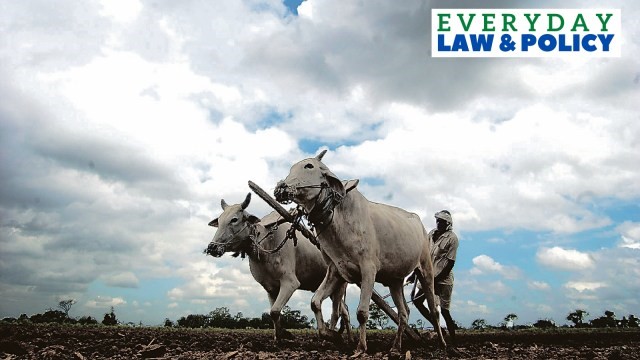
- 18 Feb 2025
In News:
Announced in Union Budget 2025, the Prime Minister Dhan-Dhaanya Krishi Yojana (PMDKY) aims to boost agricultural productivity, sustainability, and rural income in India’s lagging agricultural regions.
Inspired by the Aspirational Districts Programme (ADP), PMDKY targets 100 districts marked by low productivity, moderate cropping intensity, and limited credit access, benefiting approximately 1.7 crore farmers.
Key Highlights:
Objectives:
- Enhancing Agricultural Productivity:Promote scientific techniques and modern farming to improve crop yield and land use efficiency.
- Crop Diversification & Sustainable Practices:Encourage climate-resilient and eco-friendly farming methods, reducing dependence on water-intensive crops.
- Post-Harvest Infrastructure Development:Establish storage and agro-processing units at panchayat and block levels to reduce post-harvest losses (currently ~35-40%).
- Improving Irrigation Efficiency:Support micro-irrigation techniques like drip and sprinkler systems to raise water-use efficiency from the current 38%.
- Expanding Agricultural Credit:Facilitate short- and long-term institutional credit, especially through the Kisan Credit Card (KCC) and agri-fintech models.
Implementation Framework:
- Targeted District Identification:Based on cropping intensity, productivity, and credit penetration, using data from the Ministry of Agriculture, NABARD, and Department of Financial Services.
- Integrated Funding Approach:Leverages existing schemes like RKVY, PMKSY, NFSM, and SMAM through convergence for efficient fund utilization.
- Institutional Mechanism:Multi-tier coordination involving the Centre, States, and District-level authorities for implementation and real-time performance tracking.
- Technology Integration:GIS mapping, AI advisories, blockchain for supply chain transparency, and sensor-based monitoring for precision agriculture.
- Farmer Empowerment:Strengthening Krishi Vigyan Kendras (KVKs) and Farmer Producer Organizations (FPOs) to support knowledge dissemination, skill development, and market access.
Strategic Significance of PMDKY:
- Bridging Regional Disparities:Targets structurally weak districts to ensure balanced regional growth in agriculture.
- Food and Water Security:Supports climate-resilient farming amid rising rainfall variability (+15–20% by 2050) and increasing water scarcity (55% of agriculture is rainfed).
- Boosting Rural Incomes:Aimed at transforming smallholder agriculture, as ~80% of Indian farmers are marginal with an average income of ?1.2 lakh annually.
- Reducing Post-Harvest Losses:Addresses infrastructural bottlenecks causing 35–40% losses, especially in perishables like fruits and vegetables.
India–US TRUST Initiative
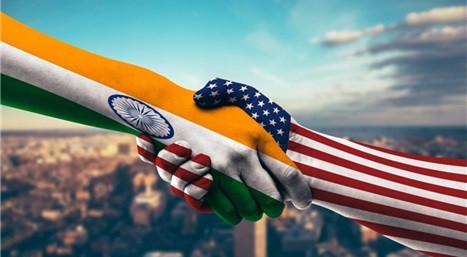
- 18 Feb 2025
In News:
India and the United States launched the Transforming Relationship Utilizing Strategic Technology (TRUST) initiative during the Indian Prime Minister’s 2025 visit to the US. This landmark partnership aims to strengthen bilateral cooperation across critical and emerging technology sectors, diversify global supply chains, and reduce dependence on China in strategic industries.
Key Objectives and Scope of the TRUST Initiative
The TRUST initiative is a comprehensive framework focused on:
- Critical Minerals and Advanced Materials
- Establishing resilient supply chains for critical minerals such as lithium, cobalt, and rare earth elements (REEs)—vital for sectors like defense, semiconductors, clean energy, and electric vehicles (EVs).
- Launch of the Strategic Mineral Recovery Programme to recover and process critical minerals from industrial waste.
- Joint R&D and investment under the Minerals Security Partnership (MSP) and Minerals Security Finance Network (MSFN).
- India to scale up exploration, processing, and recycling of critical minerals under the National Critical Minerals Mission (2025–31) with a ?16,300 crore outlay.
- Pharmaceutical Sector Collaboration
- Reducing India’s reliance on China for Active Pharmaceutical Ingredients (APIs) through alternative supply chains and expanded API manufacturing.
- Encouraging investment in Indian pharma production, including facilities in the US.
- Pharma formed 21.9% of India’s $20 billion consumer goods exports to the US in 2023.
- High-Tech and Emerging Technologies
- Joint R&D in semiconductors, AI, quantum computing, space, defense, biotechnology, and energy.
- U.S.-India AI Roadmap to be finalized by 2025, including data center infrastructure, processor access, and AI applications.
- Facilitating innovation through academic, industrial, and government collaboration.
- Technology Transfer and Trade Facilitation
- Easing export controls and restrictions to foster high-tech trade.
- Enabling smoother cross-border technology flows and investment under mechanisms like the CHIPS Act (ITSI Fund).
Associated Initiatives Enhancing TRUST
- iCET (Initiative on Critical and Emerging Technologies) – Launched in 2022, focuses on bilateral cooperation in semiconductors, AI, quantum, and wireless tech with defense applications.
- INDUS-X – Defense innovation initiative involving India’s iDEX and the US Defense Innovation Unit (DIU), emphasizing secure chip designs and green energy.
- CHIPS Act Collaboration – ITSI Fund supports India's semiconductor capacity through funding for R&D and infrastructure.
Strategic Significance
- Reducing China Dependence:China dominates ~70% of global REE production. TRUST helps India and the US build alternative, secure supply chains.
- Boosting Atmanirbhar Bharat:TRUST supports India’s goals under the National Critical Minerals Mission to become self-reliant in key strategic sectors.
- Enhancing Tech and Defense Capability:Ensures timely access to rare materials essential for missiles, radars, fighter jets, AI hardware, and quantum computing.
- Strengthening Pharma and Health Security:Addresses global API shortages and reduces vulnerability in critical drug manufacturing.
- Promoting Clean Energy Transition:Secures supply of minerals like lithium and cobalt essential for battery production and renewable energy tech.
- Fostering Innovation and Investment:Encourages private sector collaboration and US investments in India’s tech, mineral, and pharma sectors.
Current Status of India’s Critical Minerals Ecosystem
- Imports: India is a net importer of most critical minerals; import bill (FY24) stood at approx. ?30,000 crore.
- Exports: India remains a net exporter in rare earths.
- Budgetary Allocation (2025–31):
- ?7,000 crore for exploration.
- ?1,500 crore for recycling incentives.
MITRA Platform
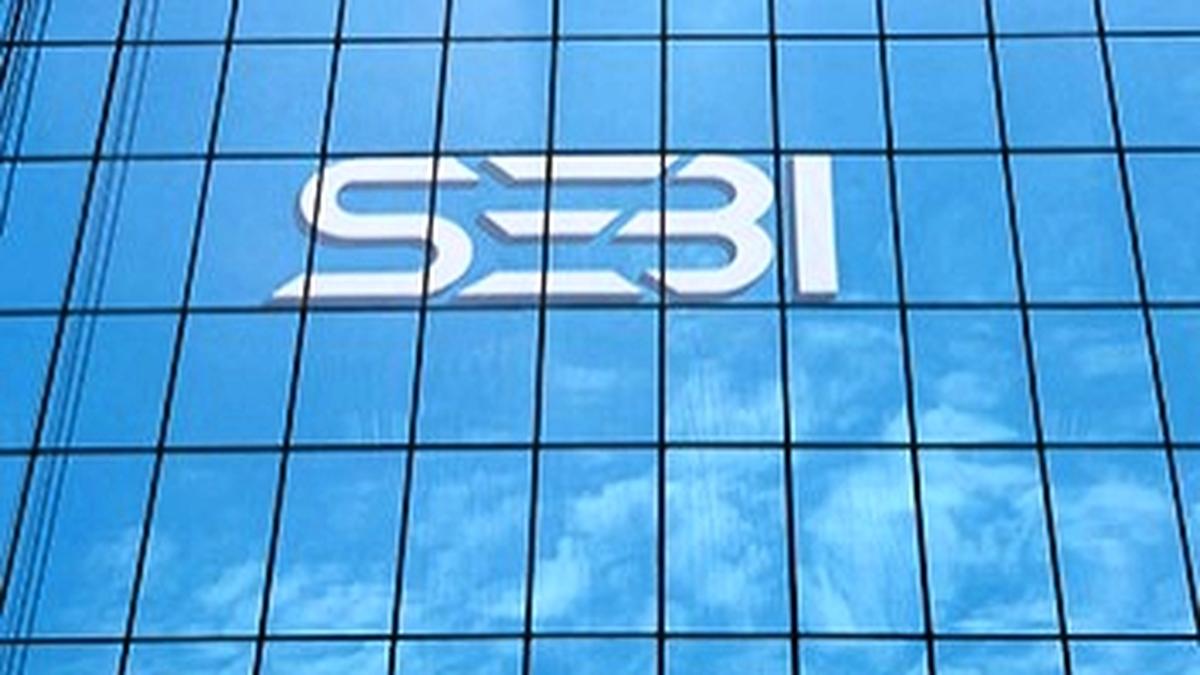
- 18 Feb 2025
ecosystem, the Securities and Exchange Board of India (SEBI) has launched a new digital platform—MITRA (Mutual Fund Investment Tracing and Retrieval Assistant).
Key Features:
- Objective:MITRA aims to help investors trace, identify, and reclaim inactive or unclaimed mutual fund folios, while ensuring KYC (Know Your Customer) compliance under prevailing regulatory norms.
- Developed by:The platform has been developed at an industry level by the two Qualified Registrar and Transfer Agents (QRTAs) —
- Computer Age Management Services Ltd. (CAMS)
- KFIN Technologies Ltd.
These firms serve as agents of Asset Management Companies (AMCs).
- Hosted by:The platform is hosted jointly by CAMS and KFIN Technologies to serve as a centralized, searchable database for inactive and unclaimed mutual fund folios across the industry.
- Functions:
- Enables investors to search for overlooked investments or investments made in their name by others.
- Facilitates rightful legal claims by heirs or nominees.
- Encourages KYC compliance, thus reducing the number of non-KYC compliant folios.
- Aims to minimize the risks of fraudulent redemptions linked to dormant folios.
- Supports the creation of a transparent financial ecosystem by reducing unclaimed investments.
Definition of Inactive Folio:
- A mutual fund folio is considered inactive when no investor-initiated financial or non-financial transactions have occurred for ten consecutive years, even though the folio holds units.
Institutional Measures:
- Unit Holder Protection Committee (UHPC):SEBI has broadened the role of the UHPC under mutual fund regulations. The committee is now tasked with monitoring inactive folios, unclaimed dividends, and pending redemptions, ensuring proactive steps are taken for investor protection.
- Stakeholder Involvement:SEBI has directed AMCs, RTAs, Registered Investment Advisers (RIAs), the Association of Mutual Funds in India (AMFI), and mutual fund distributors to actively promote awareness regarding MITRA among investors.
FulaniCommunity
- 17 Feb 2025
In News:
The Fulani, one of Africa’s largest and most dispersed ethnic communities, trace their ancestry to the ‘Green Sahara’ period (12,000–5,000 years ago), according to recent genetic and anthropological research. This period, when the Sahara was a fertile, habitable landscape, marks the early development of African pastoralism.
The Fulani population is estimated at 40 million, spread across West and Central Africa, from Senegal and Guinea in the west to Lake Chad in the east. They are particularly concentrated in Nigeria, Mali, Guinea, Senegal, and Niger, and inhabit the Sahel-Savannah belt, straddling arid and semi-arid regions.
Nomadic Lifestyle and Social Structure
Traditionally known for their nomadic pastoralism, the Fulani have maintained a unique socio-cultural identity despite centuries of migration and contact with other African populations. Their society is internally diverse, divided into three main groups:
- Makiyaya: Nomadic herders
- FulaninSoro: Town dwellers
- Bararo: Forest dwellers, with strong ties to ancestral rituals and nature-based belief systems
Fulani communities are largely egalitarian, with a deep emphasis on kinship, family structure, and communal responsibility. Polygamy is widely practiced, and marriage ceremonies are elaborate, often involving intricate rituals and festive celebrations.
Women’s Role and Cultural Expression
Fulani women are recognized for their weaving, artisanal craftsmanship, and particularly their hairstyles, which are often elaborately styled and adorned with beads and cowrie shells—symbols of both identity and aesthetic tradition.
Linguistic and Religious Identity
The Fulani speak Fula (also called Fulfulde or Pulaar), a language belonging to the Atlantic branch of the Niger-Congo language family. Though largely Muslim, many retain spiritual connections with nature-based traditions, particularly among the Bararo groups.
Genetic Heritage and Historical Significance
A recent multinational study led by Uppsala University and Charles University analyzed biological and anthropological data from 460 Fulani individuals across 18 locations in seven African countries. It confirmed a complex genetic history, shaped by:
- Ancient North African ancestry, particularly linked to populations akin to modern-day Berbers of Morocco
- Historical interactions with West, Central, and East African communities
- A shared ancestral genetic component, likely rooted in early pastoral communities of the Green Sahara era
The research underscores that despite their high mobility and limited archaeological footprint, the Fulani have preserved a distinct genetic and cultural identity for millennia.
Fishery Survey of India (FSI)
- 17 Feb 2025
In News:
A landmark deep-sea fishing expedition by the Fishery Survey of India (FSI) has led to the discovery of previously underexploited fishing grounds in the Arabian Sea, offering significant promise for India’s marine resource sustainability, food security, and fishermen’s livelihoods.
Key Highlights of the Expedition
- Conducted by: Fishery Survey of India (FSI), under the Ministry of Fisheries, Animal Husbandry & Dairying
- Supported by: Pradhan Mantri MatsyaSampada Yojana (PMMSY)
- Geographic Scope: Waters between Kollam (Kerala) and Goa, at depths of 300–540 meters
- Location: Approx. 100–120 nautical miles off India’s western coast
- Catch Rate: Average Catch Per Unit Effort (CPUE) recorded at 150–300 kg/hr
- Timing: No significant difference observed in catches between day and night
Marine Biodiversity of the New Grounds
The discovered ecosystem harbors rich and diverse marine life, including:
- Commercially Important Crustaceans:
- Humpback nylon shrimp
- Arabian red shrimp
- Deep sea mud shrimp
- Deepwater spiny lobster
- Deep sea squat lobster
- Cephalopods:
- Opisthoteuthis species
- Octopoteuthissicula
- Diverse Deep-Sea Fishes:
- Froghead eel, Rosy cod, Snake mackerel, Sackfish
- Royal escolar, Bandfishes, Duckbill flathead
- Splendid alfonsino, Myctiophids, Shadow driftfish
- Spinyjawgreeneye, Shortfin neoscopelid, Stargazers
- Elasmobranchs (Cartilaginous Fishes):
- Sicklefin chimaera, Pygmy ribbontail catshark
- Bramble shark, Indian swellshark, Travancore skate
Significance for India’s Fisheries Sector
- Reduces Pressure on Coastal Fisheries: Coastal resources are under stress from overfishing, habitat degradation, and climate change. Deep-sea grounds offer a sustainable alternative.
- Supports Blue Economy Goals: Enhances India’s capacity to sustainably exploit its vast Exclusive Economic Zone (EEZ).
- Economic Benefits: Aligns with the government’s goal of doubling fishermen’s income and generating employment in marine-based livelihoods.
- Scientific Value: Contributes to marine biodiversity documentation and ecosystem-based fisheries management.
14th Asian Fisheries and Aquaculture Forum (14AFAF)
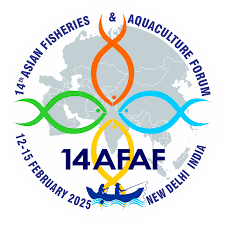
- 17 Feb 2025
In News:
India is set to host the 14th Asian Fisheries and Aquaculture Forum (14AFAF) from February 12–14, 2025, at the ICAR Convention Centre, Pusa Campus, New Delhi.
Key Highlights
- This triennial international event—organized by the Asian Fisheries Society (AFS), Indian Council of Agricultural Research (ICAR), Department of Fisheries (DoF), and AFS Indian Branch (AFSIB)—is themed "Greening the Blue Growth in Asia-Pacific".
- It aims to promote sustainable, inclusive, and innovation-driven development in the fisheries and aquaculture sector.
- Previous Indian Host: India is hosting the AFAF for the second time, the first being the 8th AFAF in Kochi (2007).
- Legacy: AFAF, headquartered in Kuala Lumpur, Malaysia, has been a leading platform for fostering global cooperation in fisheries and aquaculture since its inception.
India's Role and Significance
- India ranks second globally in total fish production and aquaculture output, underlining its emerging leadership in the blue economy.
- The forum presents a strategic opportunity to:
- Showcase India’s technological and policy advancements.
- Strengthen international collaborations.
- Promote sustainable, resilient, and globally competitive aquaculture systems.
Forum Structure and Thematic Sessions
The event will feature 20+ technical sessions and keynote presentations by international experts, focusing on priority areas such as:
- Sustainable Fisheries Management:Emphasis on responsible fishing, biodiversity preservation, and efficient resource utilization.
- Climate Change and Fisheries:Addressing climate impacts on aquatic ecosystems and developing adaptive strategies.
- Smart Aquaculture & Technology:Integration of AI, IoT, and blockchain to enhance fish farming efficiency and monitoring.
- Fish Genetics & Biotechnology:Innovations for disease resistance, improved yields, and genetic advancements.
- Post-Harvest and Value Addition:Improving fish quality, market access, and export competitiveness through better processing techniques.
Crocodile Catfish

- 17 Feb 2025
In News:
The recent discovery of the Crocodile Catfish (Bagariussuchus) in the Bahini River near Basistha, Guwahati, Assam, has garnered attention from conservationists and ecologists alike. As one of the largest freshwater catfish species in Asia, its presence in Indian waters raises both scientific interest and ecological concerns.
Taxonomy and Distribution
- Scientific Name: Bagariussuchus
- Family: Sisoridae – the largest family of Asian catfishes, widely distributed across South and Southeast Asia.
- Common Names: Asian Giant River Catfish, Crocodile Goonch Catfish, Giant Devil Catfish
- Geographical Range: Native to countries including India, Nepal, Bangladesh, Myanmar, and Thailand.
Habitat and Morphological Features
- Natural Habitat: Prefers fast-flowing rivers, deep pools, turbulent rapids, and areas with rocky or gravelly substrates.
- Often found among boulders, submerged roots, and debris, thriving in cool, oxygen-rich waters.
- Physical Description:
- Long, cylindrical body with a broad head and wide mouth.
- Typicallydark brown to black, with irregular patches or spots for camouflage.
- Dorsal fin is elongated, stretching along most of the back.
- Size: Can grow up to 1.5 meters in length and weigh over 50 kilograms, though smaller specimens (~70 cm) are also observed.
Behaviour and Ecology
- Feeding Habits: A carnivorous predator, feeding on smaller fish, crustaceans, and aquatic invertebrates.
- Known for its voracious appetite, capable of consuming prey nearly its own size.
- Most active during evening or nighttime, making it a nocturnal feeder.
- Sexual Dimorphism: Males are generally slimmer and may exhibit slightly brighter coloration than females.
Ecological Concerns
- The discovery of the Crocodile Catfish in a non-native region like the Bahini River raises concerns about its invasive potential.
- It can threaten native aquatic biodiversity by preying on indigenous species and disturbing the ecological balance.
- Overfeeding and rapid proliferation can degrade water quality and disrupt food chains.
Conservation Status
- IUCN Red List: Near Threatened (NT): This status reflects concerns about habitat degradation, overfishing, and ecological displacement, which may impact population stability across its range.
India Gas Market Report: Outlook to 2030
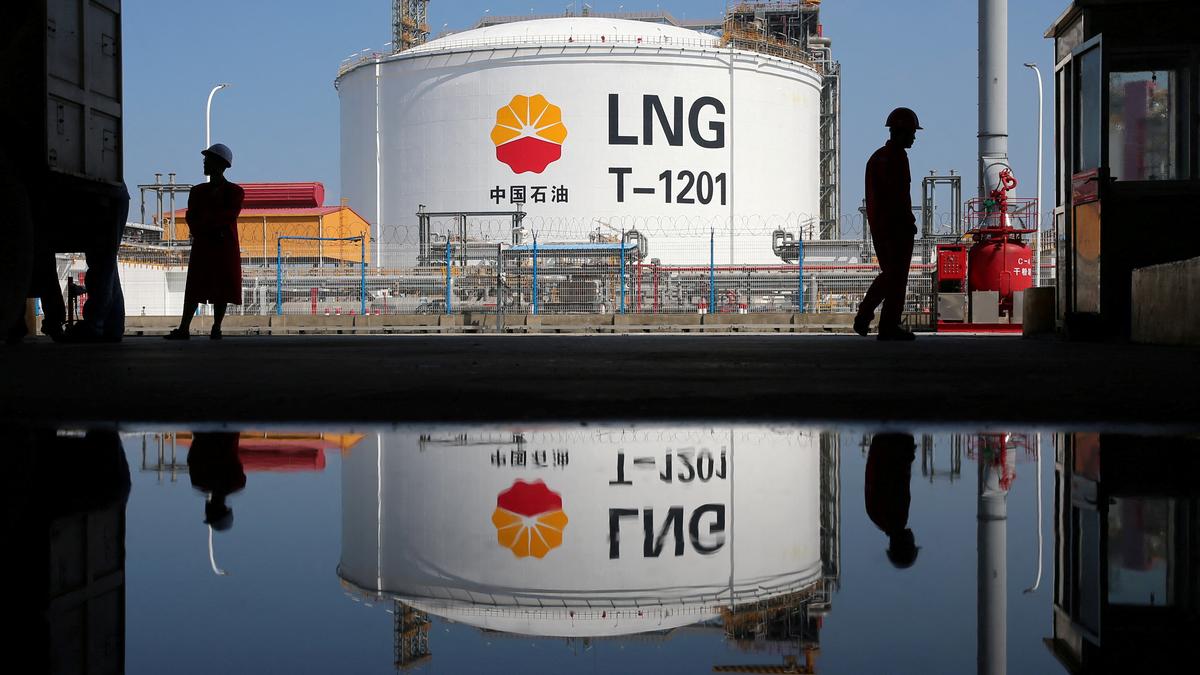
- 17 Feb 2025
In News:
The International Energy Agency (IEA), in its report “India Gas Market Report: Outlook to 2030”, has highlighted the transformative potential of natural gas in India’s energy transition.
As India aims to raise the share of natural gas in its primary energy mix from ~6% to 15% by 2030, the report outlines a roadmap for achieving this goal through policy reforms, infrastructure expansion, and market liberalization.
Current Status and Future Outlook
- Demand Growth: India's natural gas consumption is projected to increase by 60%, reaching 103 billion cubic meters (bcm) by 2030. The City Gas Distribution (CGD) sector, which supplies gas to households, transport, and industries, will drive this growth.
- Domestic Production: India produced 35 bcm in 2023, with the Krishna-Godavari deepwater fields contributing a quarter. Production is expected to reach just under 38 bcm by 2030, a modest 8% increase.
- Import Dependency: With domestic supply growth lagging behind demand, LNG imports are expected to more than double, from ~30 bcm in 2023 to around 65 bcm by 2030. India is already the fourth-largest LNG importer globally.
Infrastructure Expansion
India’s natural gas infrastructure has undergone rapid growth:
- Since 2019, the number of CNG stations quadrupled and residential gas connections more than doubled.
- The gas transmission pipeline network expanded by 40%, with another 50% expansion expected by 2030.
- CGD infrastructure is poised for a further boom, supporting increased consumption in urban areas.
Sectoral Trends
- Industry: Heavy industry and manufacturing are expected to add 15 bcm to gas demand by 2030.
- Refining: Gas use in refineries will rise by over 4 bcm as more refineries get connected.
- Transport: Greater CNG adoption, if incentivized, could significantly reduce vehicular emissions.
Challenges Hindering Growth
- Price Distortion: Prices from legacy fields are capped (e.g., USD 6.5–10 per MMBtu), limiting true market-based discovery.
- Monopoly in Transport & Marketing: GAIL’s dominance in both gas marketing and pipeline ownership creates potential conflicts of interest.
- Storage Limitations: India lacks underground gas storage (UGS) and has limited LNG storage capacity, affecting supply security.
- Policy and Regulatory Gaps: Inadequate third-party access and fragmented pricing/taxation systems reduce investor confidence.
Policy Recommendations by IEA
- Gas Pricing Freedom:
- Implement full pricing freedom, in line with Kirit Parekh Committee (2022) recommendations.
- Initially lift ceilings on high-cost deepwater and ultra-deepwater projects.
- Allow producers to sell more output on platforms like the Indian Gas Exchange (IGX).
- Unbundling Supply and Transmission:
- Establish independent gas transmission system operators (TSOs).
- Legally separate marketing from pipeline operations to ensure fair, non-discriminatory access.
- Standardize Gas Sales Agreements (GSAs) and Gas Transmission Agreements (GTAs).
- Infrastructure and Market Development:
- Ensure transparent, regulated third-party access to pipelines.
- Develop strategic gas reserves and expand LNG terminal capacity.
- Improve data transparency on pipeline capacities and tariffs.
- Tax and Regulatory Reforms:
- Harmonize taxes across fuels to create a level playing field.
- Rationalize GST on CNG vehicles and revise import duties on natural gas.
- Offer tax benefits to natural gas similar to electric vehicles to promote adoption.
- Secure Long-Term LNG Contracts:
- With legacy contracts expiring post-2028, proactive procurement is essential to avoid spot market volatility.
Rising Heatwaves in India
- 16 Feb 2025
In News:
India is increasingly facing more frequent, intense, and prolonged heatwaves, posing a significant threat to public health, economic productivity, agricultural stability, andenvironmental sustainability. This trend underscores the broader implications of climate change, particularly for developing economies with large vulnerable populations.
Understanding Heatwaves
A heatwave is defined as a prolonged period of abnormally high temperatures, often accompanied by high humidity. As per the India Meteorological Department (IMD):
- A heatwave is declared when the maximum temperature reaches at least 40°C in plains and 30°C in hilly regions.
- The severity is determined by how much the temperature exceeds the normal.
Impacts of Heatwaves
- Public Health:
- Prolonged heat exposure increases the risk of heatstroke, dehydration, and worsens cardiovascular and respiratory illnesses.
- Vulnerable groups include the elderly, outdoor workers, and those without access to cooling.
- Livelihoods and Employment:
- According to the World Bank, India could lose 34 million jobs by 2030 due to heat-stress-related productivity declines.
- The informal sector and outdoor labourers are especially at risk.
- Agriculture and Food Security:
- Heat stress leads to reduced crop yields, livestock deaths, and increased irrigation demand.
- It threatens the food supply chain and rural incomes.
- Water Scarcity:
- 54% of India’s land is under high to extremely high water stress, as per the World Resources Institute (WRI).
- Heatwaves exacerbate droughts and deplete groundwater sources.
- Environmental Degradation:
- Higher temperatures increase the risk of wildfires, especially in forested and arid zones.
- Ecosystem services and biodiversity are under stress.
- Infrastructure and Energy:
- Rising temperatures lead to increased energy demand for cooling, straining power grids.
- Urban infrastructure suffers due to heat-induced wear and tear.
President’s Rule Imposed in Manipur
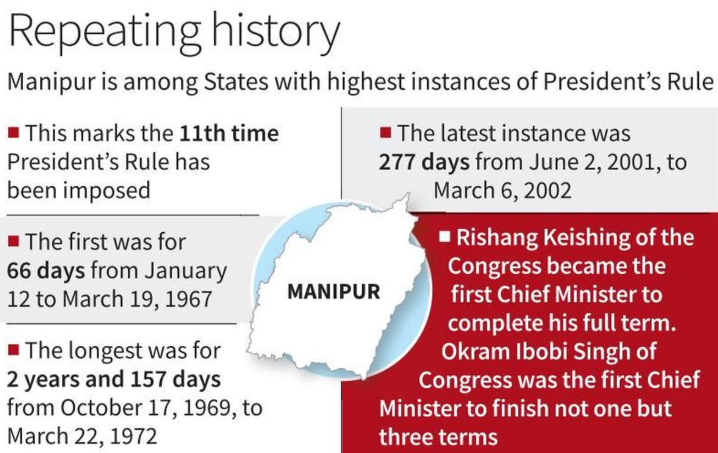
- 16 Feb 2025
In News:
On 13th February 2025, President DroupadiMurmu imposed President’s Rule in Manipur under Article 356 of the Constitution, following a report submitted by the State Governor Ajay Kumar Bhalla. The move comes in the wake of a prolonged period of ethnic violence, governance vacuum, and the resignation of Chief Minister N. Biren Singh on 9th February 2025.
Constitutional Provisions:
- Article 356 empowers the President to assume control of a state’s administration if it is determined that the state cannot be governed as per constitutional provisions.
- The Governor’s report or other evidence of breakdown is a prerequisite.
- Under this, the elected state government is dismissed, and the Governor becomes the executive head on behalf of the President.
- The State Legislative Assembly is either dissolved or placed under suspended animation. In Manipur’s case, it is under suspended animation, with its term valid until 2027.
- The proclamation must be approved by both Houses of Parliament within two months, and if extended, it can last up to six months at a time, with a maximum duration of three years.
Crisis Background and Ethnic Conflict
Manipur has witnessed an intense ethnic conflict between the Meitei and Kuki-Zo communities since May 3, 2023. The violence has led to:
- Over 250 people killed, and
- More than 60,000 displaced.
Security concerns and political instability escalated after the Chief Minister’s resignation, with the BJP leadership unable to find a consensus candidate for replacement. The deteriorating law-and-order situation, coupled with governance paralysis, prompted the imposition of President’s Rule.
Security and Migration Concerns
Former CM N. Biren Singh raised alarm over:
- Rising illegal immigration through the 398-km porous border with Myanmar, worsened by the Free Movement Regime (FMR).
- A demographic shift threatening the State’s land, identity, and resources.
- Post-violence governance failure, as state machinery struggled to respond effectively.
He emphasized the need to intensify detection and deportation of illegal immigrants, a concern linked to the root causes of ethnic tension.
Historical Context
- This is not the first time Manipur has come under central rule. The last imposition of President’s Rule in Manipur lasted 277 days, from June 2, 2001 to March 6, 2002.
Devolution Index Report 2024

- 16 Feb 2025
In News:
Recently, the Union Minister of State Prof. S. P. Singh Baghel released the Devolution Index Report at the Indian Institute of Public Administration (IIPA), New Delhi.
Titled “Status of Devolution to Panchayats in States – An Indicative Evidence-Based Ranking 2024”, the report assesses the extent of autonomy and empowerment of Panchayati Raj Institutions (PRIs) across Indian States and UTs.
Context and Constitutional Framework
The initiative is anchored in the vision of Article 243G of the Constitution and the 73rd Constitutional Amendment, which mandates the devolution of powers, authority, and responsibilities to Panchayats over 29 subjects listed in the Eleventh Schedule. It reflects the spirit of grassroots democracy and aims to realize the vision of "Local Self-Government".
Core Objectives and Dimensions of the Index
The Devolution Index provides an evidence-based evaluation of decentralization and self-governance in rural India. It assesses PRIs across six critical dimensions:
- Framework – Legal and institutional setup for decentralization.
- Functions – Scope of responsibilities devolved to Panchayats.
- Finances – Fiscal powers and resource autonomy.
- Functionaries – Availability and control over human resources.
- Capacity Building – Training and skill development mechanisms.
- Accountability – Transparency, audit mechanisms, and citizen participation.
Significance and Policy Implications
- Strengthening Cooperative Federalism: By highlighting inter-state comparisons, the Index fosters competitive federalism in the spirit of collaborative governance.
- Multi-Stakeholder Utility:
- Citizens: Increases transparency in Panchayat functioning and fund utilization.
- Elected Representatives: Offers a data-driven basis for decentralization advocacy.
- Officials & Policymakers: Acts as a policy instrument for reform and targeted capacity building.
- Aligns with National Vision:
- Supports Viksit Bharat goals through ??????????????????????????????? (developed and empowered PRIs).
- Contributes to inclusive rural development and grassroots democratization.
Income-tax Bill, 2025

- 16 Feb 2025
In News:
The Income-tax Bill, 2025, tabled in Parliament on February 13, 2025, seeks to repeal and replace the Income-tax Act, 1961, marking a landmark step in tax law simplification.
It reflects the government's commitment to ease of doing business, legal clarity, and tax compliance, without altering the core tax policy or rate structure.
Guiding Principles
- Textual and structural simplification for better clarity.
- Policy continuity—no major tax policy changes.
- Preservation of existing tax rates for predictability.
Approach and Methodology
- Three-pronged strategy:
- Simplify language and eliminate legalese.
- Remove obsolete, redundant, and repetitive provisions.
- Reorganize the Act for logical and easier navigation.
- Consultative process:
- 20,976 online suggestions received.
- Stakeholder consultations with taxpayers, professionals, and industry bodies.
- International best practices reviewed, notably from Australia and the UK.
Quantitative Simplification
Parameter Income-tax Act, 1961 Income-tax Bill, 2025 Change
Words 5,12,535 2,59,676 ↓ 2,52,859
Chapters 47 23 ↓ 24
Sections 819 536 ↓ 283
Tables 18 57 ↑ 39
Formulae 6 46 ↑ 40
Key Features and Improvements
- Qualitative Enhancements:
- Use of simplified and accessible language.
- Consolidation of amendments to reduce fragmentation.
- Enhanced readability via structured use of tables and formulae.
- Elimination of outdated provisions.
- Introduction of "Tax Year":Defined as the 12-month period beginning April 1, providing better uniformity.
- Crypto as Capital Asset:Virtual Digital Assets (VDAs) such as cryptocurrencies included in the definition of "property", now taxable as capital assets.
- Dispute Resolution Clarity:Improved transparency in Dispute Resolution Panel (DRP) procedures by including points of determination and reasoning—addressing a key criticism of ambiguity in the earlier framework.
- Removal of Obsolete Exemptions:Section 54E, providing capital gain exemptions for transfers before April 1992, has been scrapped.
- Expected Timeline:Once enacted, the Income-tax Act, 2025 is proposed to come into effect from April 1, 2026.
Gangasagar Mela
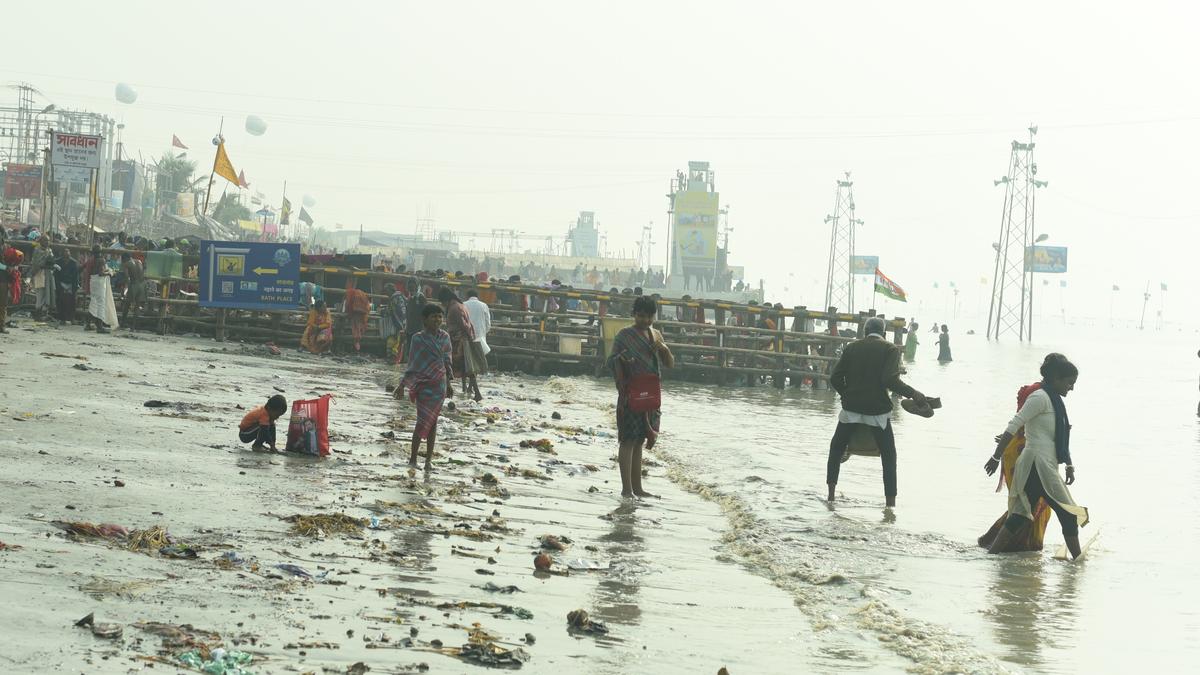
- 16 Feb 2025
In News:
Recently, several Ministers of the West Bengal government gathered at a conference room on Sagar Island, situated at the mouth of the Bay of Bengal — the southernmost tip of the State — to brief mediapersons on the arrangements for the Gangasagar Mela 2025.
Gangasagar Mela: Overview
- Second-largest human congregation in the world, after the Kumbh Mela.
- Held annually on Makar Sankranti (January 14) at the confluence of River Ganga and Bay of Bengal.
- Pilgrims take a holy dip at the confluence; site houses the Kapil Muni Temple.
- In 2025, the West Bengal government claimed over 1.10 crore pilgrims visited.
Location & Geography
- Sagar Island (Sagardwip/Ganga Sagar):
- Located ~120 km from Kolkata.
- Largest island in the Sundarbans archipelago.
- Population: ~2 lakh (2011 Census).
- Classified under the sand group category.
- Accessed by crossing the Muriganga River via ferry.
Climate Change Impact
- Rising sea levels and erosion are threatening Sagar Island:
- Sea has advanced from 1,500 m to 470 m from the Kapil Muni Temple in ~10 years.
- Tidal surge rises from 4.6 m to 7.6 m during high tides.
- Erosion worsened by:
- Mangrove destruction for construction during mela.
- Flattening of sand dunes and vegetation, removing natural barriers.
Environmental Challenges
- Constructions often violate Coastal Regulation Zone (CRZ) norms (no construction within 500 m of high tide line).
- Beaches have turned muddy, unfit for bathing; pilgrims walk through marshes.
- Concrete embankments, built after removing mangroves, washed away during cyclones.
- Geotextiles used for erosion control are ineffective near the temple due to strong wave action.
Cyclones & Vulnerability
- Recent major cyclones: Yaas (2021), Remal (May 2024), Dana (Oct 2024).
- Local communities frequently displaced; loss of livestock and property reported.
- Rising salinity impacting fish farming and livelihoods.
Socio-Economic Impact
- Youth migration due to lack of job opportunities.
- Local economy disrupted by environmental stress.
- Many locals say the mela offers little direct benefit to them.
Governance and Policy Issues
- West Bengal government spent ~?250 crore in 2024 for mela arrangements.
- Proposed ?4,100 crore World Bank-funded embankment project:
- World Bank: 70% cost; State: 30%.
- Aimed at protecting 52 inhabited islands in Sundarbans.
- Centre-State conflict:
- WB government alleges non-cooperation from the Centre.
- No Central funds provided for the mela, unlike the Kumbh Mela.
- Demand for national mela status for Gangasagar.
Cultural and Political Dimensions
- Religious significance emphasized by Shankaracharya of Puri.
- Soft Hindutva strategy attributed to West Bengal’s ruling party (TMC).
- Political undertones visible in temple construction and event promotion.
UDAN 5.5 – Advancing Last-Mile Air Connectivity
- 15 Feb 2025
In News:
- The Government of India has launched UDAN 5.5, the latest phase of its flagship regional air connectivity scheme UDAN (UdeDesh ka AamNaagrik).
- It aims to enhance last-mile air connectivity in remote, hilly, and island regions using smaller aircraft, helicopters, and seaplanes.
About UDAN Scheme
- Launched: 2016, under the National Civil Aviation Policy (NCAP).
- Nodal Ministry: Ministry of Civil Aviation.
- Purpose: To make air travel affordable, accessible, and widespread, especially in Tier-2 and Tier-3 towns.
Objectives
- Provide affordable air travel to the common citizen.
- Improve air connectivity in unserved and underserved regions.
- Promote regional development and economic integration.
Key Features
- Fare Cap: ?2,500 per hour of flight for 50% of seats (about 500 km distance).
- Viability Gap Funding (VGF):
- Provided to airlines to cover shortfalls between operational cost and revenue.
- Financed via Regional Connectivity Fund (RCF).
- Government Contribution to VGF:
- State Governments: 20%
- Union Territories & North-Eastern Region (NER) States: 10%
- Support Measures: Concessions from Central/State Governments and airport operators.
Special Variants Under UDAN
- Lifeline UDAN: For transporting medical cargo during COVID-19.
- Krishi UDAN: For agricultural produce value realization, especially from NER and tribal districts.
- International UDAN: To connect NER cities like Guwahati and Imphal with international destinations.
UDAN 5.5 – Key Highlights
- Focuses on last-mile connectivity in challenging terrains where traditional aviation is impractical.
- Aircraft Types Allowed:
- Category 1A: < 9 seats
- Category 1: < 20 seats
- Operational Modes:
- Seaplanes: Use of 80 water bodies including waterdromes, ponds, dams.
- Helicopters: Routes mapped from 400 helipads nationwide.
- Small Aircraft: Routes specifically for aircraft under 20-passenger capacity.
- Encourages air taxi and niche aviation operators.
Achievements of UDAN (as of 2024)
- Passenger Impact: Enabled travel for over 1.5 crore passengers.
- Flight Operations: Over 2.8 lakh UDAN flights completed.
- Route Expansion: 619 routes operationalized, including helicopter routes.
- Airport Growth: Number of operational airports doubled from 74 in 2014 to over 157 in 2024.
- Destinations Connected:
- 68 unserved/underserved destinations added: includes 58 airports, 8 heliports, 2 water aerodromes.
Future Scope
- Current Challenges:
- India currently has no active seaplane services.
- Fewer than 20 small aircraft (Category A1) in operation.
- Projected Developments (next 5 years):
- Establishment of 50+ seaplane routes.
- Creation of 20–25 water aerodromes.
- Induction of around 30 new aircraft for regional connectivity.
Einstein Ring Discovered by ESA’s Euclid Telescope
- 15 Feb 2025
In News:
- The European Space Agency’s (ESA) Euclid space telescope has recently discovered a rare Einstein ring around the galaxy NGC 6505, located nearly 590 million light-years from Earth.
- This ring was formed by the light of a distant unnamed galaxy situated 4.42 billion light-years away, distorted and amplified due to gravitational lensing by NGC 6505.
What is an Einstein Ring?
- It is a circular ring of light that appears around a massive celestial object such as a galaxy, dark matter concentration, or cluster of galaxies.
- Caused due to strong gravitational lensing, it occurs when a massive foreground object (gravitational lens) bends and amplifies the light from a background object, resulting in a circular or arc-like appearance.
- The phenomenon only results in a full ring when the observer, lensing object, and background galaxy are almost perfectly aligned.
Theoretical Basis
- Named after Albert Einstein, who in his General Theory of Relativity predicted that massive objects warp space-time, thereby bending the path of light.
- The phenomenon of gravitational lensing, and by extension Einstein rings, was first theoretically anticipated by Einstein and empirically confirmed much later.
Scientific Importance
- Extremely rare phenomena: Occur in less than 1% of galaxies.
- Serve as natural cosmic magnifying lenses that allow scientists to study:
- Dark Matter: Helps trace the invisible distribution of dark matter through gravitational effects.
- Dark Energy: Supports understanding of dark energy’s role in accelerating the universe’s expansion.
- Distant Galaxies: Reveals otherwise invisible galaxies by amplifying their light.
- Universe Expansion: Provides data on how space between galaxies stretches over cosmic time.
Gravitational Lensing: Explained
- Gravitational lensing occurs when a massive body (galaxy, cluster, black hole) creates a gravitational field that bends and magnifies light from objects behind it.
- This leads to multiple outcomes — arcs, double images, or full rings (Einstein rings).
- The lensing object in the recent case is NGC 6505, a galaxy first observed in the 19th century.
Observation and Imaging
- Einstein rings are not visible to the naked eye and require powerful space telescopes like Euclid for detection.
- Euclid captured images showing a bright central galaxy (NGC 6505) with a distinctive, cloudy ring formed by the bent light from the background galaxy.
About the Euclid Space Telescope
- Launched in 2023 by ESA using a SpaceX Falcon 9 rocket from Cape Canaveral, Florida.
- Operates from Lagrangian Point 2 (L2), located 1.5 million km from Earth.
- Designed for a six-year mission to study the dark universe.
- Key Objectives:
- Create the largest 3D map of the cosmos.
- Observe billions of galaxies across 10 billion light-years.
- Understand the distribution of dark matter and the influence of dark energy in the early universe.
- Study light emitted from galaxies up to 10 billion years ago to trace cosmic evolution.
Gender Budgeting
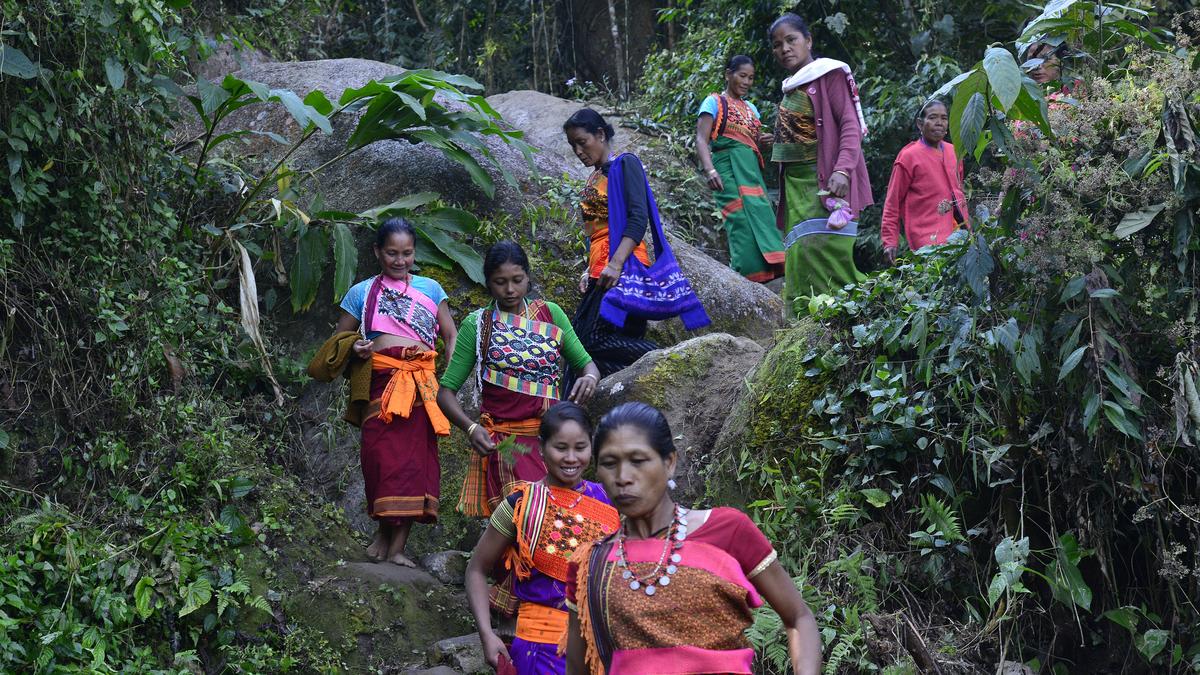
- 15 Feb 2025
In News:
The Gender Budget allocation for FY 2025-26 has increased to ?4.49 lakh crore, accounting for 8.86% of the total Union Budget, up from 6.8% in FY 2024-25. This represents a 37.25% increase compared to the ?3.27 lakh crore allocated in the previous year.
Key Highlights:
- Expansion Across Ministries:
- A total of 49 Ministries/Departments and 5 Union Territories (UTs) have reported allocations in the Gender Budget Statement (GBS) for 2025-26, marking the highest participation since the inception of the Gender Budget.
- Twelve new Ministries have been included in the GBS this year, signaling a broader inclusion of gender considerations in sectors such as animal husbandry, biotechnology, water resources, food processing, and railways.
- Gender Budget Allocation Breakdown:
- Part A (100% Women-specific schemes): ?1,05,535.40 crore (23.5% of total GBS).
- Part B (30-99% allocation for women): ?3,26,672 crore (72.75% of total GBS).
- Part C (Below 30% allocation for women): ?16,821.28 crore (3.75% of total GBS).
- Top Ministries reporting high percentages in gender-focused allocations include the Ministry of Women & Child Development (81.79%), Department of Rural Development (65.76%), and Department of Health & Family Welfare (41.10%).
- Focus on Women’s Economic Participation:
- The Union Budget aims to boost women’s participation in economic activities, targeting 70% by 2047.
- Women’s Labour Force Participation Rate (LFPR) rose to 42% in 2023-24 from 33% in 2021-22.
- Efforts to close the gender gap involve increased allocations to programs like Skill India, Deendayal Antyodaya Yojana-National Rural Livelihoods Mission (DAY-NRLM), and PM Vishwakarma, with 52% of the ?1.24 lakh crore allocated for these programs earmarked for women and girls.
- Support for Women Entrepreneurs:
- Women own 20.5% of micro, small, and medium enterprises (MSMEs) in India, employing approximately 27 million people.
- The Budget focuses on empowering women entrepreneurs by advocating for collateral-free loans, alternative credit scoring models, and financial literacy programs.
- Establishing 30 million additional women-owned businesses could generate 150-170 million jobs by 2030, contributing significantly to India's employment needs.
- Gig Economy and Informal Sector:
- The Budget introduces measures to formalize gig workers, 90% of whom are women. By issuing identity cards and registering gig workers on the e-Shram portal, the Budget aims to provide them with access to social security and financial inclusion benefits.
- This addresses the challenges faced by women in the informal sector, including low wages, job insecurity, and lack of maternity benefits.
- Gender Inclusivity in Technology:
- A dedicated ?600 crore allocation under the India AI Mission aims to promote gender inclusivity in the technology sector. This includes the establishment of a Centre of Excellence on Artificial Intelligence (AI) for education and skill development, ensuring women’s participation in high-growth technological fields.
- Gender Budgeting Components:
- Part A: Gender-specific expenditure, directly benefiting women (e.g., BetiBachaoBetiPadhao).
- Part B: Pro-women general expenditure, benefiting both men and women but focusing on women’s advancement (e.g., MGNREGA).
- Part C: Gender-neutral budgets that may require gender-sensitive planning (e.g., Har GharNal project, which reduces women’s time spent fetching water).
- Policy Vision and Challenges:
- The Union Budget for 2025-26 is part of the government’s vision for a "Viksit Bharat" with zero poverty, universal education, 100% skilled labor, and 70% female participation in the workforce by 2047.
- While the Budget lays a strong foundation, addressing persistent challenges like gender pay gaps, occupational segregation, and cultural barriers will require sustained policy interventions, gender-sensitive workplace reforms, and effective implementation of gender-disaggregated data for monitoring outcomes.
Corruption Perceptions Index (CPI) 2024
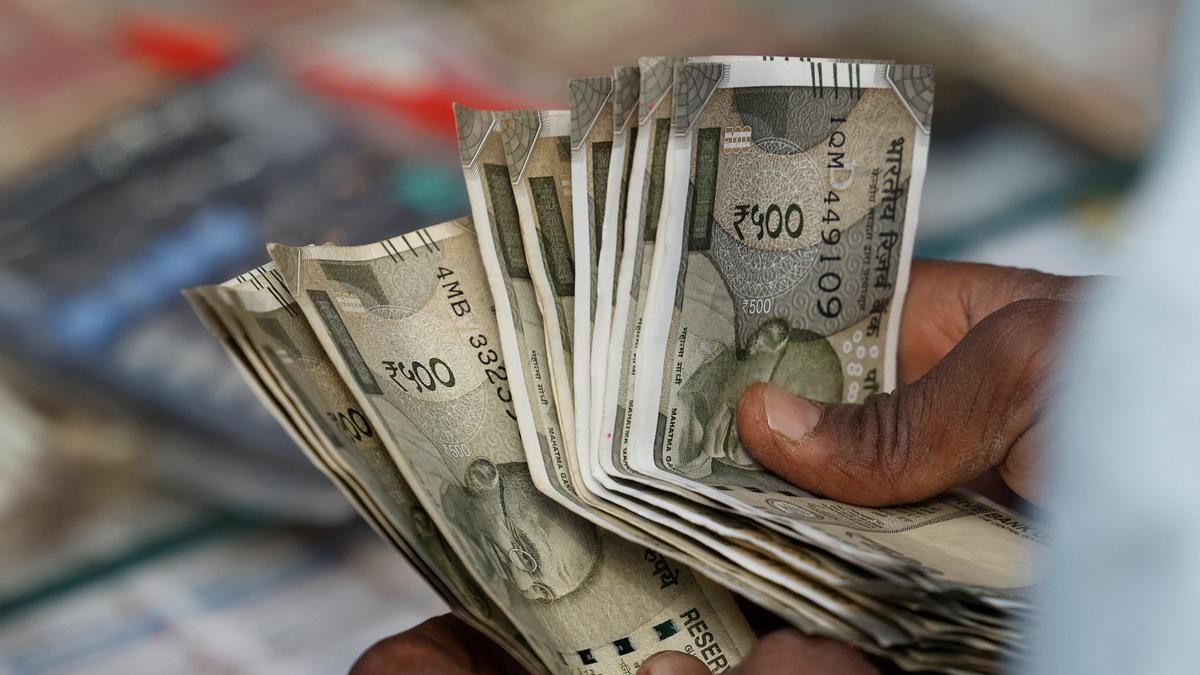
- 15 Feb 2025
In News:
India ranked 96th out of 180 countries in the Corruption Perceptions Index (CPI) for 2024, with a score of 38, a decline from 39 in 2023 and 40 in 2022. This indicates a worsening perception of corruption within India’s public sector.
Global Context:
- The CPI, compiled annually by Transparency International, is a widely recognized global ranking system that evaluates the perceived levels of corruption in public sectors.
- It uses a scale of 0 to 100, where 0 indicates highly corrupt and 100 signifies very clean.
- The CPI is based on expert assessments and surveys, drawing from at least three data sources out of 13 recognized corruption assessments from organizations like the World Bank and the World Economic Forum.
- Top Ranking Countries: Denmark topped the 2024 CPI, followed by Finland and Singapore, indicating strong governance systems with minimal corruption. These countries are recognized for their effective public sector governance, transparency, and low corruption levels.
- Regional Comparison: Among India’s neighbors, Pakistan ranked 135th, Sri Lanka at 121st, Bangladesh at 149th, and China ranked 76th, performing relatively better than India. The Asia-Pacific region, in general, saw a decline in its average CPI score, dropping by one point to 44.
- Global Trends: The CPI 2024 reveals troubling global trends, with corruption being a persistent issue worldwide. While 32 countries have significantly improved their corruption scores since 2012, 148 countries have either stagnated or worsened in the same period.
- The global average score remains at 43, with more than two-thirds of countries scoring below 50, signaling a widespread corruption problem.
- Corruption’s Impact on Climate Action: One of the significant findings in 2024 is the link between corruption and climate action. Corruption undermines efforts to combat climate change by misappropriating funds meant for emission reduction and climate adaptation projects.
- The report warns that such corruption obstructs effective policies and hinders climate change mitigation, leading to environmental degradation. Furthermore, it highlights that corruption in high-CPI countries often serves the interests of fossil fuel companies, complicating global climate efforts.
- Corruption and Human Rights: The report underscores that corruption not only impedes economic development but also contributes to the erosion of democracy, human rights violations, and instability. Corruption, particularly in the form of misallocation of resources, exacerbates the vulnerability of populations already affected by climate change, poverty, and human rights abuses.
- Financial Hubs and Illicit Funds: Many countries with high CPI scores, despite their lower domestic corruption levels, serve as financial hubs that attract illicit funds stemming from corruption and environmental damage. This "dirty money" exacerbates corruption on a global scale and has far-reaching consequences that extend beyond national borders.
- The Call for Action: Transparency International’s report stresses the need for global cooperation in tackling corruption. It warns that corruption is a major contributor to the rise of authoritarianism and calls for urgent, concrete action to address global corruption. The report emphasizes that combating corruption is crucial for achieving a peaceful, sustainable, and democratic world.
India’s Indigenous Shakti Semiconductor Chip

- 15 Feb 2025
In News:
India has achieved a significant milestone in semiconductor technology with the development of the indigenous Shakti semiconductor chip. Developed by the Indian Institute of Technology (IIT) Madras in collaboration with the Indian Space Research Organisation (ISRO) and supported by the Ministry of Electronics and Information Technology (MeitY), the Shakti chip is a crucial component of India’s push for technological self-reliance under the Digital India RISC-V (DIRV) initiative.
Overview of Shakti Semiconductor Chip
- The Shakti chip is an indigenous microprocessor based on the RISC-V open-source Instruction Set Architecture (ISA).
- Its primary objective is to meet the high-performance computing, security, and reliability needs of India’s defense, aerospace, and space industries.
- It was specifically designed to support applications in satellite missions, avionics, embedded systems, and command-and-control operations.
- The chip is the third in the Shakti series, following the earlier RIMO (2018) and MOUSHIK (2020) chips, which served as technology demonstrators.
Key Features:
- Indigenous Development: Fully developed, fabricated, and tested in India, ensuring complete control over the design and manufacturing process.
- RISC-V Architecture: The Shakti chip utilizes the RISC-V open-source architecture, offering flexibility for customization and adaptation to various hardware and application needs.
- Fault Tolerant and Reliable: Designed to endure the harsh conditions of space and defense applications, making it highly reliable for mission-critical functions.
- High-Performance Computing: Supports complex functions like AI-based operations, real-time control systems, and sensor integration, essential for space missions and advanced defense technologies.
- Advanced Security: Aimed at providing robust security measures for critical sectors, including defense and aerospace, ensuring protection against cyber threats.
- Expandable and Scalable: The chip supports multiple boot modes and hybrid memory extensions, allowing for future upgrades and expansions, especially for space exploration.
Applications of the Shakti Chip
- Space Missions: The Shakti chip plays a vital role in powering ISRO's command-and-control systems, satellite avionics, and embedded systems used in various space missions.
- Defense & Aerospace: It enhances India’s strategic autonomy by reducing reliance on foreign semiconductor technology for military-grade electronics.
- IoT & AI Applications: The chip’s high-performance computing capabilities are ideal for smart systems, the Internet of Things (IoT), and AI applications.
- Research and Development: The chip contributes significantly to India’s semiconductor ecosystem, providing a foundation for further R&D in indigenous chip fabrication.
The Digital India RISC-V (DIRV) Initiative
- Launched in April 2022 by MeitY, the DIRV initiative aims to strengthen India’s semiconductor ecosystem by promoting the development of indigenous RISC-V-based microprocessors.
- The initiative emphasizes reducing dependency on foreign semiconductor solutions and fostering self-reliance in the digital sector.
- DIRV also focuses on high-performance computing for emerging technologies such as 5G, AI, and cloud computing. Through collaborations with IITs, ISRO, C-DAC, and private industry partners, the program aims to create a robust ecosystem for scalable microprocessor solutions.
IRIS: A Key Development from Shakti
- One of the most notable outputs of the Shakti chip initiative is the IRIS (Indigenous RISC-V Controller for Space Applications).
- Developed for ISRO’s space missions, the IRIS chip is a high-performance, fault-tolerant, 64-bit processor based on the Shakti microprocessor.
- It has been designed to meet the specific needs of space missions, such as satellite command-and-control systems, by integrating custom modules like watchdog timers and advanced serial buses.
- The IRIS chip also features multiple boot modes and hybrid memory extensions for future scalability and expansion in line with upcoming space missions.
Market Intervention Scheme (MIS)

- 14 Feb 2025
In News:
To enhance the efficacy and wider adoption of MIS, the Government of India revised the guidelines in 2025.
Key Highlights:
- Objective: It aims to provide price support for perishable agricultural and horticultural commodities not covered under the Minimum Support Price (MSP) regime. It prevents distress sales during periods of excessive production and sharp price declines.
- Implementing Authority:The scheme is under the Department of Agriculture & Farmers’ Welfare and is now a component of the PM-AASHA (Pradhan Mantri AnnadataAaySanrakshan Abhiyan) umbrella scheme.
- Eligibility & Activation:
- Implemented on the request of State/UT Governments.
- Triggered when market prices fall by at least 10% compared to the average price of the previous normal year.
- Nature of the Scheme:
- Ad-hoc price support mechanism operational during sudden market crashes.
- Cost-sharing pattern between Centre and States is 50:50, and 75:25 for North-Eastern states.
- Procurement Provisions (Revised 2025):
- Procurement limit increased from 20% to 25% of total production of the crop.
- Direct Benefit Transfer (DBT) mode introduced: States may directly compensate farmers for the price difference between Market Intervention Price (MIP) and actual selling price.
- Physical procurement is optional under the revised scheme.
- Authorized Procurement Agencies:
- Central Nodal Agencies like NAFED (National Agricultural Cooperative Marketing Federation of India) and NCCF (National Cooperative Consumers’ Federation of India).
- Farmer Producer Organizations (FPOs), Farmer Producer Companies (FPCs), and state-nominated agencies can also participate in procurement, storage, and transportation.
- Support for Transportation and Storage:
- Reimbursement of storage and transport costs is provided by Central Nodal Agencies for TOP crops (Tomato, Onion, Potato).
- This provision helps balance regional price disparities between producing and consuming states.
- Significance:
- The revamped MIS strengthens market resilience for perishable crop producers.
- Enhances State participation, reduces post-harvest losses, and ensures remunerative returns through institutional and technological support mechanisms.
SevaBhoj Yojana
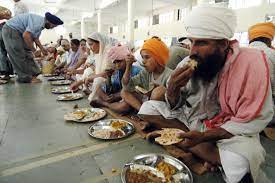
- 14 Feb 2025
In News:
Launched in August 2018 by the Ministry of Culture, the SevaBhoj Yojana is a Central Sector Scheme aimed at supporting charitable and religious institutions that provide free food (langar, prasad, bhandara) to the public without discrimination.
Key Highlights:
- The scheme provides reimbursement of the Central Government’s share of Central Goods and Services Tax (CGST) and Integrated Goods and Services Tax (IGST) paid on the purchase of specific raw food items used in preparing meals.
- Objectives of the Scheme
- Reduce the financial burden on charitable/religious institutions engaged in feeding the public.
- Encourage the tradition of community kitchens and public service across diverse religious institutions.
- Promote inclusive religious philanthropy while ensuring transparency and accountability in public spending.
Key Features
Feature Details
Launched By Ministry of Culture, Government of India
Year of Launch August 2018
Target Beneficiaries Temples, Gurudwaras, Mosques, Churches, Ashrams, Monasteries, etc.
Reimbursed Taxes CGST and Central Share of IGST
Scope of Benefit Raw food items used for free food distribution
Coverage Threshold Institutions must serve free food to at least 5000 people/month
Required Duration of Operation Minimum 3 years of continuous food service
Eligibility Criteria
To qualify for the scheme, institutions must:
- Serve free food to a minimum of 5,000 people per month.
- Be in operation for at least three years prior to application.
- Be registered under:
- Section 10 or 12AA of the Income Tax Act, or
- Societies Registration Act, or
- Relevant public trust laws, or
- Statutory religious bodies constituted under law.
- Possess a District Magistrate’s certificate confirming their ongoing food distribution service.
Implementation Mechanism
The scheme ensures transparency and streamlined reimbursement through a digital and multi-tier process:
- Institutions register on the NGO Darpan Portal of NITI Aayog.
- Apply through the Central Sector Monitoring System (CSMS) Portal of the Ministry of Culture.
- Submit relevant documents to the Nodal Central Tax Officer in their State/UT.
- On verification, a Unique Identity Number (UIN) is issued.
- Verified tax claims are forwarded by the concerned GST Authority to the Ministry.
- The Ministry releases the sanctioned amount to the GST Authority, which reimburses the institution.
Governance and Outreach
- The Ministry promotes the scheme through official websites and social media platforms.
- Efforts are made to ensure equitable representation of all religions and communities.
- As of January 2025, several institutions across states have benefited from the scheme, though individual beneficiary counts are not collected.
S?janam

- 14 Feb 2025
In News:
In a significant stride toward sustainable healthcare and waste management, India launched its first indigenous Automated Biomedical Waste Treatment Plant, named S?janam, on April 13, 2025, at AIIMS, New Delhi.
Developed by the CSIR-National Institute for Interdisciplinary Science and Technology (CSIR-NIIST), Thiruvananthapuram, under the Ministry of Science & Technology, this innovative rig marks a paradigm shift in handling biomedical waste, moving away from conventional, polluting incineration techniques.
Why this matter?
India generates approximately 743 tonnes of biomedical waste daily (CPCB, 2023). Safe disposal has been a persistent challenge due to limited infrastructure, high costs, and environmental concerns. The launch of S?janam aligns with the government’s push for “Waste to Wealth” and environmentally responsible healthcare infrastructure, as part of the Atmanirbhar Bharat and Swachh Bharat initiatives.
What is S?janam?
- An automated, eco-friendly biomedical waste treatment rig.
- Designed to disinfect pathogenic waste like blood, urine, sputum, and lab disposables.
- Does not use incinerators, which release toxic emissions such as dioxins and furans.
Key Features & Capacity
Feature Details
Disinfection Process Non-incineration, antimicrobial treatment
Daily Treatment Capacity 400 kg of total biomedical waste
Organic Waste Handling Initially handles 10 kg/day of degradable medical waste
Environmental Safety Neutralizes foul odor; releases pleasant fragrance
Health Safety Minimizes human exposure and risk of contamination
Validation Third-party tested; treated material safer than organic vermicompost
Significance for Public Health and Environment
- Reduces dependency on expensive, energy-intensive incinerators.
- Eco-friendly solution that prevents toxic emissions and groundwater contamination.
- Aligns with Bio-Medical Waste Management Rules, 2016, which mandate safe segregation, treatment, and disposal.
- Enhances India’s capability to respond to health crises (e.g., pandemics), where waste generation spikes.
Strategic Implications
- Promotes indigenous technological innovation under “Make in India.”
- Offers a scalable solution for both urban and rural healthcare setups.
- Contributes to India’s climate commitments by cutting healthcare-related emissions.
NITI Aayog Policy Report on Expanding Quality Higher Education
- 14 Feb 2025
In News:
NITI Aayog released a comprehensive policy report titled ‘Expanding Quality Higher Education through States and State Public Universities (SPUs)’, focusing on the development of higher education institutions, particularly public universities in India.
The report aims to enhance the quality, funding, governance, and employability outcomes within SPUs, which contribute to around 80% of the country's higher education system.
The document, the first of its kind in India, presents a detailed analysis of vital indicators like quality, funding, financing, governance, and employability over the last decade, supported by stakeholder consultations with over 20 states and Union Territories, Vice Chancellors, academicians, and State Higher Education Council Chairs. The report includes nearly 80 policy recommendations, along with 125 performance indicators, aiming to address long-standing challenges within SPUs.
Key Findings from the Report
- Funding:
- Maharashtra leads in funding for higher education, with Bihar and Tamil Nadu following closely behind.
- On the other hand, states like Sikkim, Arunachal Pradesh, and Nagaland have the lowest funding for higher education, highlighting regional disparities.
- University Density:
- The national average university density is 0.8 universities per lakh population. However, states such as Sikkim, with a density of 10.3, and Arunachal Pradesh, Ladakh, Meghalaya, and Uttarakhand have significantly higher densities. In contrast, states like Bihar, Uttar Pradesh, West Bengal, and Maharashtra have lower densities compared to the national average.
- Female Enrolment:
- Kerala, Chhattisgarh, and Himachal Pradesh have achieved higher female enrolment rates than males, which reflects positive gender inclusivity trends in certain regions.
- Challenges:
- Infrastructure deficits, including a lack of quality facilities and resources.
- A shortage of faculty and staff, particularly in advanced fields such as MTech and Ph.D. levels.
- Insufficient investment in research and development (R&D).
- Outdated courses, syllabi, and curricula, which are not aligned with industry needs.
- Financial constraints due to over-reliance on traditional revenue sources like admission fees and state grants.
- Administrative delays in fund sanctioning and the absence of frameworks for securing loans through financial institutions.
Policy Recommendations
The report proposes several reforms to address the aforementioned challenges, with a focus on improving educational quality, securing better funding, enhancing governance, and boosting employability:
- Funding and Investment:
- Increase the combined investment in education to 6% of GDP, as recommended in the National Education Policy (NEP) 2020.
- Increase R&D investment (both public and private) to 2% of GDP, as recommended in the Economic Survey 2017-18.
- Creating Centers of Excellence:
- SPUs should form clusters and focus on addressing local challenges by establishing Centres of Excellence. These centres should focus on region-specific issues to drive academic and practical advancements.
- Governance Reforms:
- Enhance governance structures at SPUs, empowering Vice Chancellors, faculty, and staff through targeted capacity-building initiatives.
- States may consider setting up dedicated finance agencies, similar to the Higher Education Financing Agency (HEFA), to fund infrastructure and research development specifically for SPUs.
- Financial Innovations:
- Develop financial frameworks to increase investment in education, ensuring access to timely funds, and reducing dependency on state grants or admission fees.
- Industry-Academia Collaboration:
- Strengthen the link between academia and industry to ensure that the curricula are relevant and prepare students for the job market. This can be achieved through increased partnerships, internships, and practical learning opportunities.
Pradhan Mantri AnusuchitJaatiAbhyuday Yojana (PM-AJAY)
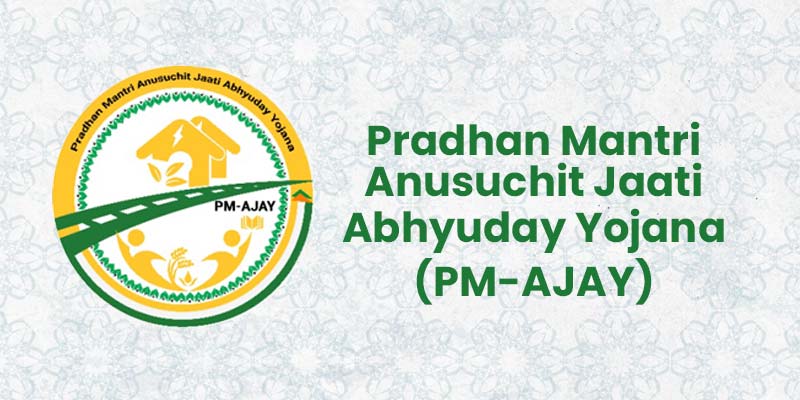
- 14 Feb 2025
In News:
It is a 100% Centrally Sponsored Scheme initiated by the Ministry of Social Justice and Empowerment. The scheme aims at the socio-economic upliftment of the Scheduled Caste (SC) communities, particularly targeting the reduction of poverty through various initiatives that focus on skill development, infrastructure, and income-generating projects.
Key Highlights:
- Launch and Funding: Launched in 2021, the scheme is fully funded by the central government, though states and Union Territories (UTs) have the option to contribute additional funds from their own resources. PM-AJAY is the consolidation of three pre-existing schemes:
- Pradhan Mantri Adarsh Gram Yojana (PMAGY)
- Special Central Assistance to Scheduled Castes Sub Plan (SCA to SCSP)
- BabuJagjivan Ram Chhatrawas Yojana (BJRCY)
- Objectives of PM-AJAY: The scheme is focused on improving the overall well-being of SC communities by:
- Reducing poverty through income-generating schemes, skill development, and infrastructure projects.
- Promoting social and economic development by improving literacy rates, educational enrolment, and providing better livelihood opportunities.
- Transforming SC-majority villages into model villages with integrated development, enhancing socio-economic indicators like education, healthcare, and financial inclusion.
- Eligibility Criteria
- Scheduled Caste (SC) persons living below the poverty line (BPL) are eligible for benefits.
- For infrastructure development, villages with 50% or more SC population are prioritized for grants.
- Key Components of PM-AJAY: The scheme comprises three core components:
- Adarsh Gram Development (formerly PMAGY): Aims to develop SC-majority villages into model villages with holistic improvements in education, healthcare, infrastructure, and skill development.
- Grants-in-Aid for District/State-Level Projects (formerly SCA to SCSP): Financial assistance is provided for livelihood development projects, including skill development programs and infrastructure projects, to generate sustainable income for SC communities.
- Construction of Hostels in Higher Educational Institutions (formerly BJRCY): Focuses on promoting higher education among SC students by constructing hostels in top-ranked institutions according to the National Institutional Ranking Framework (NIRF). This aims to reduce dropout rates and enhance access to quality education.
Special Provisions under the Grants-in-Aid Component
- 15% of the total grants are exclusively allocated for income-generating schemes for SC women.
- 30% of the grants are allocated for infrastructure development in SC-dominated areas.
- 10% of funds are reserved for skill development programs.
- The scheme encourages the formation of SC women cooperatives for producing and marketing consumer goods and services.
Achievements (2022-23)
- 1,260 villages were declared as Adarsh Gram in the financial year 2023-24 under the Adarsh Gram component.
- Nine new hostels were sanctioned under the Hostel Construction component.
- Perspective plans for seven states were approved under the Grants-in-Aid component.
India introduces HS Code for GI-Tagged Rice Exports
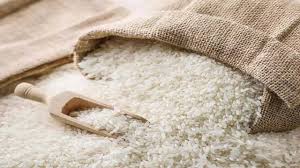
- 13 Feb 2025
In News:
India has amended the Customs Tariff Act, 1975, becoming the first country in the world to introduce a Harmonised System (HS) code for Geographical Indication (GI)-tagged rice varieties. This was announced in the Union Budget 2025–26.
Key Features of the Amendment
- HS Code Introduced For:
- 1006-30-11 – GI-tagged parboiled rice
- 1006-30-91 – GI-tagged white rice
- Objective:
- To enable uninterrupted exports of GI rice even during general export restrictions or bans.
- GI rice exports will not require special government notification during such bans.
About Harmonised System (HS) Code
- Full Form: Harmonised System Code
- Developed by: World Customs Organization (WCO)
- Structure: 6-digit global standard; India uses an 8-digit extension for more specific classification.
- Purpose: Classification of traded goods for customs, tariffs, and trade statistics.
- HS Code Hierarchy:
- First 2 digits: Chapter (e.g., “10” for cereals)
- Next 2 digits: Heading (e.g., “06” for rice)
- Last 2 digits: Subheading (e.g., “30” for semi-milled or wholly milled rice)
Impact on GI Rice Exports
- Facilitates global market access for Indian specialty rice varieties.
- Differentiates GI-tagged rice from conventional rice in trade documents.
- Prevents mislabeling and misuse of India’s GI rice identity.
- Allows exports of GI rice even under export bans, without fresh government clearance.
GI-Tagged Rice Varieties in India
- 20 GI-recognized rice varieties, including:Navara, Palakkadan Matta, Pokkali, Wayanad Jeerakasala, etc.
- 20 pending GI applications, including:Seeraga Samba, Jammu & Kashmir Red Rice, Wada Kolam Paddy, etc.
About the World Customs Organization (WCO)
- Established in 1952 as the Customs Co-operation Council; renamed WCO in 1994.
- Headquarters: Brussels, Belgium.
- Membership: 183 customs administrations, including India, covering 98% of global trade.
- Key Functions:
- Maintains and updates the HS Code every 5 years.
- Drives customs modernization through instruments like the Revised Kyoto Convention (RKC).
- Coordinates anti-smuggling, anti-counterfeiting, and trade enforcement efforts.
- Collaborates with global institutions like the WTO and UN to enhance trade efficiency.
Quipu Superstructure
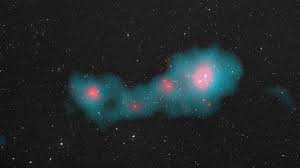
- 13 Feb 2025
In News:
Astronomers have discovered the largest known cosmic structure, named Quipu, in a study led by Hans Bohringer of the Max Planck Institute. The findings are part of efforts to map matter distribution in the universe using redshift data between 0.3 to 0.6, revealing some of the most distant known objects.
Key Features of Quipu:
Attribute Description
Type Superstructure (clusters of galaxy superclusters)
Length ~1.3 billion light-years (Over 13,000 times the Milky Way’s size)
Mass ~200 quadrillion (2 × 10¹?) solar masses
Components ~70 galactic superclusters
Shape Central filament with multiple branching filaments (named after the Incan “Quipu” cord system)
Cosmic Significance:
- Gravitational Lensing (GL): Due to its enormous mass, Quipu bends light from background objects, distorting sky images.
- Cosmic Microwave Background (CMB): Its gravitational field causes fluctuations in the CMB—the relic radiation from the Big Bang.
- Hubble Constant Impact: Quipu and similar structures distort measurements of the Universe’s expansion rate.
Scientific Context:
- Superstructures: Extremely large arrangements of matter including groups of galaxy clusters and superclusters.
- Quipu is hundreds of thousands of times more massive than a single galaxy.
- Discovered at a distance of 425 to 815 million light-years from Earth.
Other Superstructures Identified:
Alongside Quipu, astronomers identified four other massive structures:
- Shapley Supercluster
- Serpens-Corona Borealis Superstructure
- Hercules Supercluster
- Sculptor-Pegasus Superstructure
Together, these five structures:
- Contain ~45% of all galaxy clusters
- Include ~30% of galaxies
- Hold ~25% of the matter in the universe
- Occupy ~13% of the universe’s volume
Future Evolution:
- Scientists consider Quipu a "transient configuration".
- It is expected to break into smaller collapsing units in the future, altering cosmic structures over time.
R-37M Missile
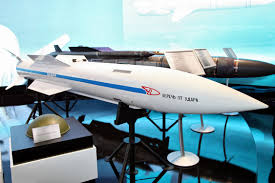
- 13 Feb 2025
In News:
Russia has recently offered the R-37M missile, a state-of-the-art, long-range air-to-air missile, to India. This missile, one of the world’s most advanced, has the potential to transform India's aerial defense capabilities. The offer also comes with the opportunity for India to license the production of this missile domestically. However, the acquisition of such a potent weapon is raising tensions in the region, particularly with Pakistan, China, and Bangladesh, and has broader strategic implications.
Overview of R-37M Missile:
The R-37M, also known by its NATO reporting name AA-13 Axehead, is a hypersonic, long-range air-to-air missile developed by Russia.
It is designed to target high-value assets, such as AWACS (Airborne Warning and Control Systems), tanker aircraft, and other support platforms, beyond visual range (BVR).
Evolved from the R-33 missile, the R-37M significantly enhances air combat capabilities due to its range, speed, and precision.
- Speed and Range: The missile can travel at speeds of up to Mach 6 (approximately 7,400 km/h), enabling it to intercept fast-moving aerial threats. It has an operational range of 300-400 km (160-220 nautical miles), making it one of the longest-reaching air-to-air missiles.
- Weight: The missile weighs 510 kg, with a 60 kg warhead.
- Guidance System: It uses an advanced combination of inertial navigation with mid-course updates, active radar homing, and semi-active radar guidance for the terminal phase.
- Combat Advantage: The R-37M can target beyond visual range, enabling the launching aircraft to engage enemy targets while remaining outside the reach of enemy missiles.
Impact on the Indian Air Force (IAF):
The R-37M missile could replace the current R-77 missile used by India’s Sukhoi Su-30MKI fighter jets. This acquisition will bolster India's air defense by providing enhanced capabilities to intercept aerial threats at greater distances. Additionally, the offer to license the local production of the missile is a significant step toward strengthening India’s defense industry and reducing its dependence on foreign weapon systems. This move can also contribute to India's strategic autonomy in military engagements.
Strategic Implications for Pakistan:
Pakistan’s Air Force (PAF) primarily relies on F-16 fighter jets for its aerial superiority. However, these aircraft are vulnerable to interception beyond the Line of Control (LoC) by the R-37M, which has an engagement range of up to 400 kilometers. This could significantly alter Pakistan's defense posture, as its aircraft would be exposed to threats from Indian aircraft even before crossing the LoC.
Potential Effects on China:
China, which already possesses advanced air-to-air missiles such as the PL-15 and PL-21, will closely monitor India’s acquisition of the R-37M missile. While China is not directly threatened by the missile due to its own advanced defense systems, India’s missile capabilities could alter the balance of air superiority in the region. The acquisition could prompt China to accelerate the development of counter-hypersonic technologies, potentially altering the trajectory of military developments in the region.
Impact on Bangladesh:
Bangladesh, which shares friendly relations with India, could find itself caught in the strategic competition between India and Pakistan, despite its own military capabilities not directly challenging India. The regional military dynamics, influenced by India’s acquisition of advanced weapons like the R-37M, may push Bangladesh to enhance its defense capabilities, either through regional alliances or by procuring advanced defense technologies.
India-Russia Defense Relations:
India’s defense cooperation with Russia has been longstanding and substantial. Between 2015 and 2020, India’s defense imports from Russia were valued at approximately $10 billion, making Russia one of India’s largest defense suppliers. Around 70% of India's defense equipment is of Russian origin. Key joint defense projects include:
- BrahMos Missile: A joint venture to develop a supersonic cruise missile.
- S-400 Triumph: A $5.4 billion deal for five S-400 air defense systems.
- AK-203 Assault Rifles: A project for the local manufacturing of over 700,000 rifles.
- Military Exercises: India and Russia conduct joint military exercises, such as the INDRA (focused on counter-terrorism) and AVIAINDRA (aerial exercises between the Indian Air Force and Russian Aerospace Forces).
Pulmonary Arterial Hypertension (PAH)
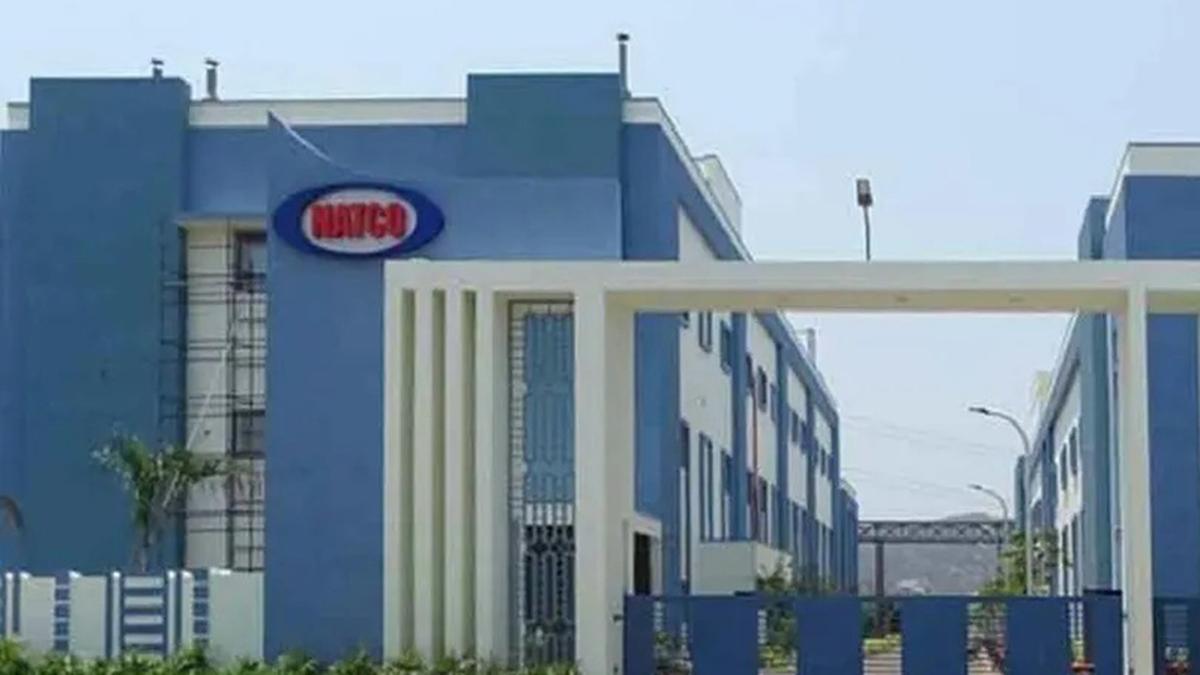
- 13 Feb 2025
In News:
- Natco Pharma, a Hyderabad-based generic drug manufacturer, has received final approval from the U.S. Food and Drug Administration (USFDA) for its generic version of Bosentan tablets for oral suspension (32mg).
- This drug, a generic version of Actelion Pharmaceuticals’ Tracleer, is used to treat Pulmonary Arterial Hypertension (PAH), a condition characterized by high blood pressure in the lungs.
- The approval comes after Natco's successful submission of an abbreviated new drug application (ANDA), which was jointly developed with its marketing partner, Lupin Pharmaceuticals, Inc.
- Natco believes that it holds the sole first-to-file status for the product, which qualifies it for a 180-day exclusivity period upon launch. The exclusivity period would allow Natco to be the only supplier of the generic product in the U.S. market for a limited time, which could offer significant market share before generic competition arrives.
- Bosentan, the active ingredient in Tracleer, is prescribed for patients suffering from PAH, a progressive condition that raises the blood pressure in the lungs and causes strain on the heart.
- The treatment helps to improve pulmonary vascular resistance and is indicated for patients aged three years and above, including those with idiopathic or congenital PAH. The product is expected to improve exercise capacity and overall quality of life for these patients.
- In the U.S., Bosentan 32mg oral suspension generated an estimated $11 million in sales for the 12 months ending September 2024.
Pulmonary Arterial Hypertension (PAH) Overview
- It is a specific type of pulmonary hypertension in which the small arteries in the lungs become thickened and narrowed. This results in obstructed blood flow and increased pressure in the pulmonary arteries, which makes the heart work harder to pump blood through the lungs.
- The exact cause of PAH remains unclear, though it is believed to result from injury to the cells lining the blood vessels in the lungs, leading to long-term vascular disease.
- PAH can develop in association with several medical conditions, including congenital heart disease, liver disease, HIV, and autoimmune diseases like scleroderma and lupus. It can also be triggered by past or current drug use, such as the abuse of methamphetamine or the use of certain diet pills.
Symptoms of PAH include:
- Shortness of breath that worsens over time
- Fatigue and dizziness
- Chest pain
- Cyanosis (blue fingers or lips)
- Fainting episodes
While there are treatment options available for PAH, including medications that help manage the symptoms and slow disease progression, there is currently no known cure. PAH remains a significant area of concern in pulmonary healthcare, and the introduction of generic Bosentan by Natco Pharma offers a more affordable treatment option for patients in the U.S.
Exercise Cyclone 2025
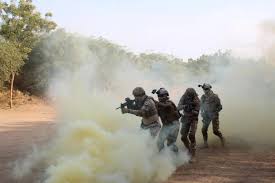
- 13 Feb 2025
In News:
- The third edition of the India-Egypt Joint Special Forces Exercise CYCLONE is being conducted from February 10–23, 2025 at the Mahajan Field Firing Range, Rajasthan.
- The previous edition (2nd) was held in Egypt in January 2024, and the first edition was conducted in India in 2023.
About Exercise CYCLONE
- It is a bilateral joint special forces military exercise between India and Egypt.
- Annual exercise, held alternatively in India and Egypt.
- The 2025 edition is focused on:
- Counter-terrorism operations
- High-intensity combat training
- Survival techniques in desert/semi-desert terrain
- Tactical drills and real-world combat scenarios
- Motto of the exercise: “Together we train, together we excel.”
Objectives
- Enhance military-to-military cooperation.
- Strengthen interoperability and joint operational capabilities.
- Exchange of special warfare tactics and combat strategies.
- Operate under frameworks aligned with Chapter VII of the UN Charter (pertaining to threats to peace, breaches of peace, and acts of aggression).
Strategic Importance
- The exercise reflects deepening India-Egypt defence cooperation.
- Aimed at enhancing readiness for evolving security challenges in the region.
- Enables both forces to operate together in simulated combat situations, improving coordination and adaptability.
India-Egypt Relations: Defence and Beyond
- Strategic Partnership established in 2023, covering:
- Political, defence, security, energy, and economic cooperation.
- Bilateral Trade Agreement (1978): Based on Most Favored Nation (MFN) clause.
- India is one of Egypt’s key trading partners in Africa.
Restructured National Bamboo Mission (NBM)
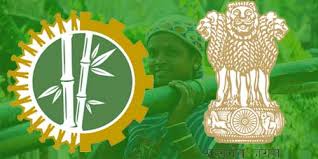
- 12 Feb 2025
In News:
The National Bamboo Mission (NBM) was initially launched in 2006 under the Ministry of Agriculture & Farmers Welfare to promote bamboo-based development. Between 2014–2016, it was subsumed under the Mission for Integrated Development of Horticulture (MIDH).
In 2018-19, it was restructured under the National Mission for Sustainable Agriculture (NMSA) as a Centrally Sponsored Scheme (CSS) to revamp bamboo cultivation, processing, and value chain integration.
A key reform was the 2017 amendment to the Indian Forest Act, 1927, which removed bamboo grown outside forests from the definition of “tree.” This de-regulated its felling and transit, boosting private bamboo farming and easing trade.
Objectives
- Increase the availability of quality planting materials and expand area under bamboo cultivation, especially in non-forest land.
- Promote post-harvest management, primary treatment, seasoning, and preservation technologies.
- Develop market infrastructure, incubation centers, and tools & equipment for value addition.
- Encourage value-added product development, skill development, and entrepreneurship.
- Reduce import dependency on bamboo and bamboo-based products.
Funding Pattern
- General States: 60% Central and 40% State funding.
- Northeastern & Hilly States: 90% Central and 10% State.
- Union Territories, BTSGs & National Level Agencies: 100% Central funding.
Implementation Framework
- Implemented through the State Nodal Departments, nominated by respective State/UT governments.
- Notable example: Bareilly Bamboo Cluster operational in Shahjahanpur district, Uttar Pradesh, since 2019-20, with activities like nursery establishment, bamboo plantation, skill development, and bamboo product demonstration.
Bamboo – Ecological & Economic Significance
- Botanical Classification: Grass (Family: Poaceae, Subfamily: Bambusoideae), ~115 genera and ~1,400 species globally.
- Native to tropical, subtropical, and mild temperate zones, with highest concentration in East and Southeast Asia.
Properties & Applications:
- Carbon Sequestration: Produces 35% more oxygen than comparable vegetation; acts as a natural carbon sink.
- Climate Adaptability: Thrives in degraded lands; prevents soil erosion; vital for land restoration.
- Alternative Energy Source: Among the fastest-growing plants (up to 90 cm/day); can substitute fossil fuels.
- Food & Medicine: Bamboo shoots are consumed in Northeast India; roots and parts used in traditional medicine.
- Livelihood Support: Flexible harvest cycles provide year-round income for farmers.
Bamboo Production Status in India
- 18,000+ inventoried grids reported bamboo presence between 2016–17 to 2019–20.
- Estimated total bamboo culms: 53,336 million.
- 35.19% increase in bamboo culms from ISFR 2019 to ISFR 2021 (an increase of 13,882 million culms).
Restructured Skill India Programme (2022–2026)
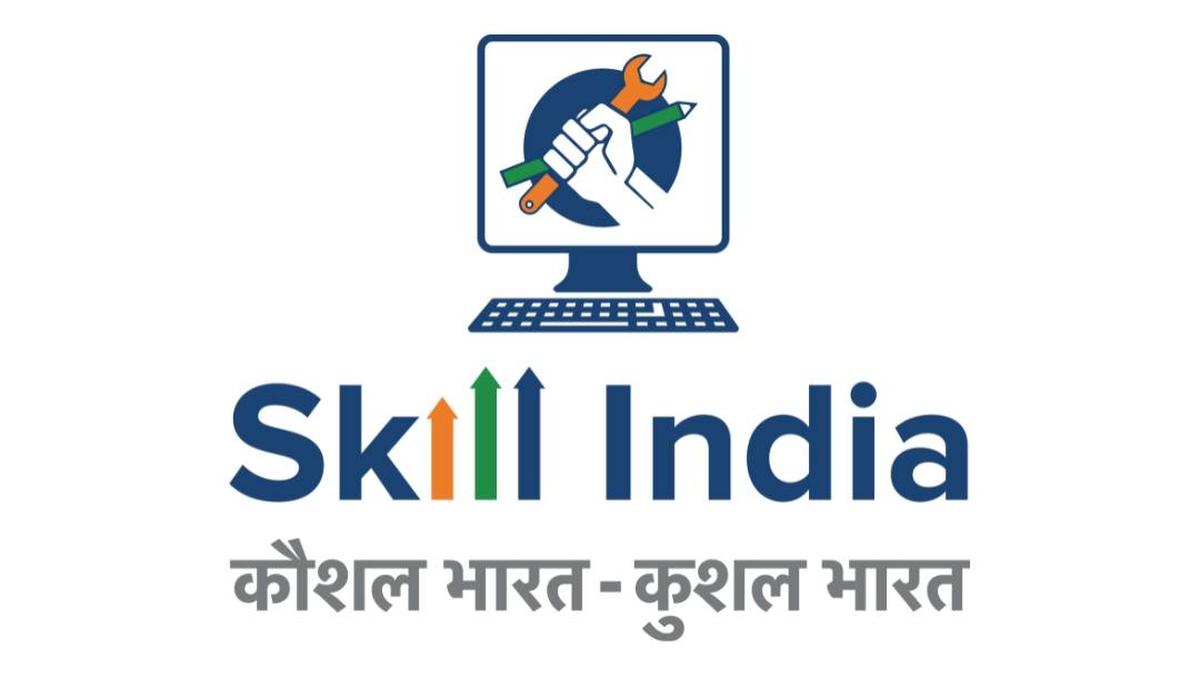
- 12 Feb 2025
In News:
The Union Cabinet has approved the continuation and restructuring of the Skill India Programme (SIP) till March 2026, with a financial outlay of ?8,800 crore.
The revamped programme consolidates three flagship schemes under a composite Central Sector Scheme—Pradhan Mantri Kaushal Vikas Yojana 4.0 (PMKVY 4.0), Pradhan Mantri National Apprenticeship Promotion Scheme (PM-NAPS), and Jan ShikshanSansthan (JSS)—with the aim to build a skilled, future-ready workforce.
Objectives and Vision
- Strengthen workforce development through industry-aligned, technology-enabled, and demand-driven skill training.
- Enhance global competitiveness, promote international mobility, and align with India's economic priorities such as Atmanirbhar Bharat, Make in India, and Digital India.
- Enable lifelong learning, skilling, reskilling, and upskilling through inclusive, flexible, and community-based training.
Beneficiaries and Coverage
- Over 2.27 crore individuals have benefited so far.
- Targeted age groups vary across schemes:
- PMKVY 4.0: 15–59 years
- PM-NAPS: 14–35 years
- JSS: 15–45 years
- Emphasis on marginalized sections, women, rural youth, aspirational districts, and the North-East Region.
Key Components of the Restructured Programme
1. Pradhan Mantri Kaushal Vikas Yojana 4.0 (PMKVY 4.0)
- Offers NSQF-aligned training via:
- Short-Term Training (STT)
- Special Projects (SP)
- Recognition of Prior Learning (RPL)
- Introduces 400+ new courses in emerging fields:
- Artificial Intelligence (AI), 5G, Cybersecurity, Green Hydrogen, Drone Technology.
- Establishment of Skill Hubs in premier institutions (IITs, NITs, JNVs, KendriyaVidyalayas, etc.).
- Focus on international mobility:
- Mobility Partnership Agreements (MMPAs), joint certifications, and language proficiency training.
- Blended learning models with digital delivery and regional language content.
- Integration with schemes such as PM Vishwakarma, PM Surya GharMuft Bijli Yojana, National Green Hydrogen Mission, and NAL JAL Mitra.
- Adoption of an Ease of Doing Business framework to reduce compliance burdens.
2. Pradhan Mantri National Apprenticeship Promotion Scheme (PM-NAPS)
- Promotes earn-while-you-learn through industry-specific apprenticeships.
- Government support of 25% stipend (up to ?1,500/month per apprentice) via Direct Benefit Transfer (DBT).
- Focus on both traditional and emerging sectors like AI, robotics, blockchain, green energy, and Industry 4.0.
- Encourages participation of MSMEs and enterprises in underserved regions.
3. Jan ShikshanSansthan (JSS) Scheme
- Community-based skilling for economically disadvantaged, rural youth, and women.
- Offers low-cost, flexible, doorstep training for both self-employment and wage-based livelihoods.
- Linked with initiatives such as PM JANMAN, ULLAS, and financial literacy campaigns.
- Also promotes awareness in health, hygiene, gender equality, and education.
Certification and Digital Integration
- All certifications are aligned with the National Skills Qualification Framework (NSQF).
- Integrated with DigiLocker and the National Credit Framework (NCrF), ensuring:
- Formal recognition of skills.
- Horizontal and vertical mobility in education and employment.
- Micro-credential courses (7.5 to 30 hours) and National Occupational Standards (NoS)-based training introduced.
Supporting Schemes and Initiatives
- SANKALP(Skill Acquisition and Knowledge Awareness for Livelihood Promotion).
- TEJAS (Skilling for international placement).
- Model Skill Loan Scheme.
Significance of Skill India Programme
- Demographic Dividend: With over 65% of India’s population below 35, the programme is pivotal in transforming potential into productivity.
- Employment & Entrepreneurship: Reduces unemployment through structured training, apprenticeships, and encourages skill-based startups.
- Global Workforce Readiness: Aligns with international standards, enabling Indian workers to access global job markets.
- Technological Preparedness: Equips the youth with skills in futuristic technologies.
- Inclusive Growth: Ensures urban-rural and gender-based equity in skilling access.
- Economic Impact: Supports India's manufacturing, IT, and services sectors, driving GDP growth.
India Achieves 100 GW Solar Power Capacity
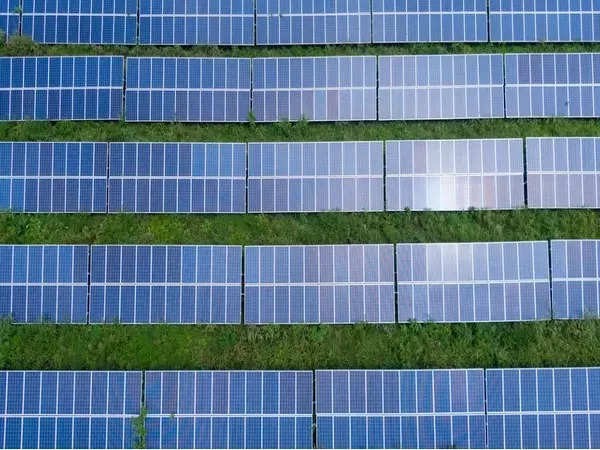
- 12 Feb 2025
In News:
India has officially surpassed 100 GW of installed solar power capacity as of January 31, 2025, marking a historic milestone in its clean energy journey. This achievement strengthens India’s position as a global leader in renewable energy and signifies major progress toward its ambitious target of 500 GW non-fossil fuel capacity by 2030, as outlined by Prime Minister Narendra Modi.
Union Minister of New and Renewable Energy, highlighted this milestone as a testament to India’s energy self-reliance, driven by key initiatives such as solar parks, rooftop solar schemes, and domestic solar manufacturing.
Growth Trajectory and Achievements
- Installed Capacity Growth:
- From 2.82 GW in 2014 to 100.33 GW in 2025 – a growth of 3450% over a decade.
- Solar energy now accounts for 47% of India’s total installed renewable energy capacity.
- Capacity Pipeline:
- 84.10 GW of solar under implementation.
- 47.49 GW under tendering.
- Including hybrid and RTC renewable projects, India has 296.59 GW of solar and hybrid projects in total.
- Record Additions in 2024:
- 24.5 GW solar capacity added, more than double from 2023.
- 18.5 GW utility-scale installations – a 2.8 times increase from 2023.
- 4.59 GW of rooftop solar added, a 53% increase over 2023.
- Top States in utility-scale solar growth:Rajasthan, Gujarat, Tamil Nadu, Maharashtra, and Madhya Pradesh.
Solar Manufacturing Boom
- Solar module production capacity has grown from 2 GW (2014) to 60 GW (2024).
- With continued policy support, India is targeting 100 GW of manufacturing capacity by 2030.
- This shift makes India a global hub for solar technology and reduces reliance on imports.
Major Government Initiatives Driving Solar Growth
- National Solar Mission (NSM) (2010):Set long-term targets, with 280 GW of solar capacity by 2030 under its ambit.
- PM SuryaGharMuft Bijli Yojana (2024):
- A game-changing rooftop solar scheme aiming to empower households with free, clean electricity.
- Nearly 9 lakh rooftop installations as of early 2025.
- PM-KUSUM Scheme:Promotes solar irrigation pumps and supports farmers with grid-connected solar systems.
- Solar Parks Scheme:Facilitates development of large-scale solar clusters in states to boost capacity.
- Production-Linked Incentive (PLI) Scheme:Incentivizes domestic manufacturing of solar PV modules.
- Net Metering Policy:Allows consumers to generate and export surplus solar power to the grid.
- International Solar Alliance (ISA):India-led global initiative fostering solar energy cooperation among solar-rich countries.
Benefits of Solar Energy for India
- Energy Security: Reduces dependence on fossil fuel imports.
- Environmental Gains: Cuts GHG emissions and combats climate change.
- Economic Boost: Millions of jobs created across installation, manufacturing, and maintenance.
- Affordability: Declining PV costs make solar a cost-effective energy source.
- Rural Electrification: Powers remote and off-grid regions, improving livelihoods.
Challenges and the Way Forward
- Land Acquisition: Scarcity of land hinders large-scale solar deployment.
- Grid Integration: Intermittency of solar power stresses the existing power grid.
- Finance & Investment: Scaling up infrastructure and storage requires sustained capital inflow.
- Storage Solutions: Affordable battery storage is essential for reliability and round-the-clock supply.
Cayman Islands
- 12 Feb 2025
In News:
A magnitude 7.6 earthquake recently struck the Caribbean Sea southwest of the Cayman Islands, as reported by the U.S. Geological Survey. While no tsunami warning was issued, tremors were felt across the region, and assessments of damage are ongoing.
Geographical and Geopolitical Overview
- The Cayman Islands is a British Overseas Territory located in the western Caribbean Sea, south of Cuba and northwest of Jamaica.
- It comprises three islands:
- Grand Cayman (largest and most populous)
- Cayman Brac
- Little Cayman
- The islands are part of the Cayman Ridge, an underwater mountain range, with the islands themselves being the emergent peaks of this ridgeline.
- Area: Only 264 sq. km
- Capital: George Town, located on Grand Cayman
- Official Language: English
- Currency: Cayman Islands Dollar (KYD)
- Ethnic Composition:
- Afro-European: 40%
- African: 20%
- European: 20%
- Other: 20%
Seismic and Climatic Features
- The islands are near the Cayman Trench, a deep subduction zone formed by the interaction between the North American and Caribbean Plates.
- Although major earthquakes are rare, the region is seismically active, and moderate to high seismic events are possible, such as the recent 7.6 magnitude quake.
- Climate: Tropical marine with a distinct wet and dry season; vulnerable to hurricanes, especially during the Atlantic hurricane season (June–November).
Ecological Significance
- Known for crystal-clear waters, coral reefs, and white sand beaches, the Cayman Islands are a global hub for marine biodiversity.
- Key ecological features include:
- Coral reefs, seagrass beds, and mangroves
- Famous dive sites like the Great Blue Hole and Bloody Bay Wall
- Terrestrial biodiversity is limited due to the islands’ small limestone-based land area, but they are home to endemic species such as the Grand Cayman Blue Iguana, which has recovered from critical endangerment through conservation efforts.
Economic Importance: A Global Financial Hub
- The Cayman Islands is renowned as a major offshore financial center and global tax haven.
- Zero taxation: No corporate, income, or capital gains tax
- Home to:
- Offshore banks
- Hedge funds
- Multinational corporations
- The islands offer a favorable regulatory environment and strict financial confidentiality laws, although they now comply with international transparency norms.
TROPEX-25

- 12 Feb 2025
In News:
The Indian Navy’s biennial TROPEX-25is currently underway in the Indian Ocean Region (IOR) from January to March 2025.
It is the Indian Navy’s largest maritime exercise, aimed at testing combat readiness and integrated warfighting capabilities across all domains.
About TROPEX
- Full Form: Theatre Level Operational Readiness Exercise (TROPEX)
- Frequency: Biennial (every two years)
- Lead Agency: Indian Navy
- Participants:
- Indian Navy (all operational units)
- Indian Army (IA)
- Indian Air Force (IAF)
- Indian Coast Guard (ICG)
Purpose and Strategic Objectives
TROPEX-25 aims to:
- Validate core warfighting skills of the Indian Navy.
- Ensure a synchronised, integrated response across services to defend India’s maritime interests.
- Simulate real-time operations in a contested maritime environment, including conventional, asymmetric, and hybrid threats.
- Enhance jointness, interoperability, and combat synergy among the three armed forces and the Coast Guard.
Duration and Operational Scope
- Timeline: January to March 2025 (Three months)
- Location: Various sectors across the Indian Ocean Region (IOR)
- Phases:
- Harbour Phase: Planning and coordination activities.
- Sea Phase: Execution of complex naval and joint operations.
- Joint Work-Up Phase: Includes cyber and electronic warfare, and live weapon firings.
- AMPHEX (Amphibious Exercise): Integrated amphibious operations.
Key Features
- Integrated Combat Operations: Real-time execution of multi-domain missions
- Cyber and Electronic Warfare: Tactical simulations of modern non-kinetic threats
- Live Weapon Firings: Enhancing target precision and battle readiness
- Inter-Service Jointness: High-level coordination across the Navy, Army, Air Force, and Coast Guard
- Maritime Domain Awareness: Surveillance and security operations over vast maritime stretches
Strategic Significance
- Reinforces India’s commitment to safeguarding maritime sovereignty and strategic interests in the Indian Ocean.
- Enhances forward-deployment strategies, logistics, and sustained operations far from the mainland.
- Demonstrates India’s ability to operate “Anytime, Anywhere, Anyhow” in support of national security.
Prime Minister’s 15-Point Programme for Minorities
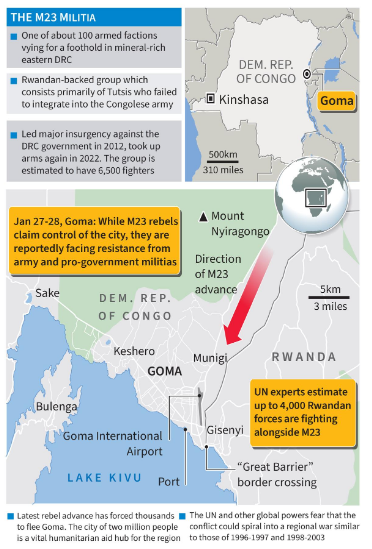
- 11 Feb 2025
In News:
The Prime Minister’s New 15 Point Programme for welfare of Minorities is a programme which covers various schemes/initiatives of the participating Ministries/Departments with an aim to ensure that the underprivileged and weaker sections of six centrally notified minority communities have equal opportunities for availing the various Government welfare Schemes and contribute to the overall socio-economic development of the Country.
Key Highlights:
The programme has the following broad objectives:
- Enhancing opportunities for education
- Ensuring an equitable share for minorities in economic activities and employment, through existing and new schemes, enhanced credit support for self-employment, and recruitment to State and Central Government jobs
- Improving the conditions of living of minorities by ensuring an appropriate share for them in infrastructure development schemes
- Prevention and control of communal disharmony and violence.
The schemes of the Ministry of Minority Affairs covered under the Prime Minister’s 15 Point Programme are exclusively meant for notified minorities. However, 15% of the outlays and targets, to the extent possible, of schemes/initiatives implemented by other participating Ministries/Departments are earmarked for notified minorities.
The welfare schemes, including initiatives for education and skill development of minorities, being implemented by Ministry of Minority Affairs and other participating ministries under the programme, are as under:
- Pre-Matric Scholarship Scheme
- Post-Matric Scholarship Scheme
- Merit-cum- Means based Scholarship Scheme
- National Minorities Development Finance Corporation (NMDFC) Loan Schemes
- Samagra Shiksha Abhiyaan (M/o Education)
- DeenDayalAntyodaya Yojana (DAY-NRLM)- (M/o Rural Development)
- DeenDayal Upadhyay – GraminKaushalya Yojana (M/o Rural Development)
- Pradhan Mantri Awaas Yojana (M/o Rural Development)
- DeenDayalAntyodaya Yojana - National Urban Livelihoods Mission (M/o Housing & Urban Affairs)
- Priority Sector Lending by Banks (Department of Financial Services)
- Pradhan Mantri Mudra Yojana (Department of Financial Services)
- POSHAN Abhiyaan (Ministry of Women & Child Development)
- National Health Mission (Department of Health & Family Welfare)
- Ayushman Bharat (Department of Health & Family Welfare)
- National Rural Drinking Water Programme (Jal Jeevan Mission), (Department of Drinking Water & Sanitation)
The Schemes are being implemented by the respective Ministries/Departments under the saturation approach of Government. Under the saturation approach of the Government many of the components have achieved mainstreaming.
SwavalambiniProgramme
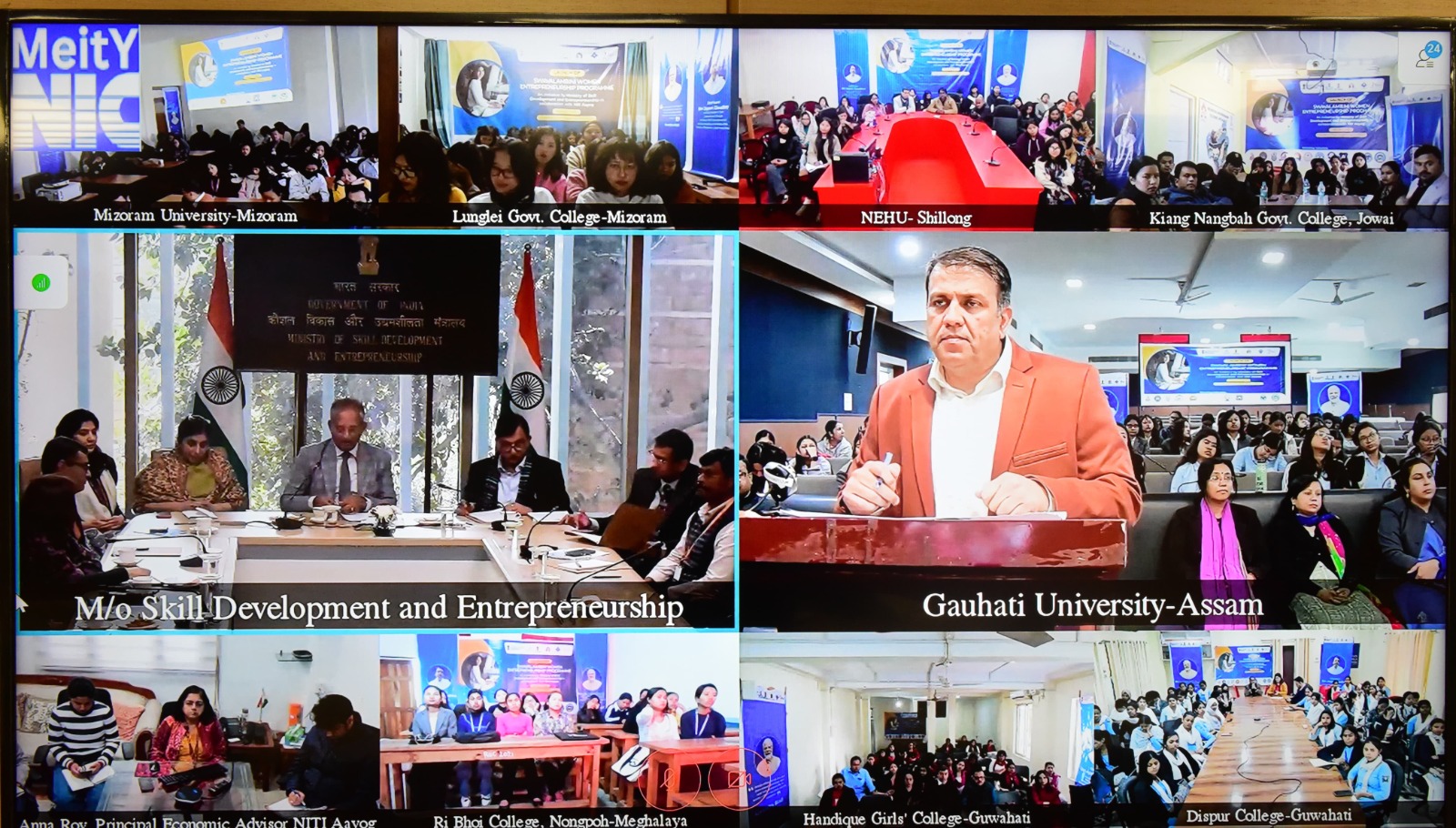
- 11 Feb 2025
In News:
The SwavalambiniProgramme, launched by the Ministry of Skill Development and Entrepreneurship (MSDE) in collaboration with NITI Aayog, is a pioneering initiative aimed at empowering women in the Northeast.
This programme targets female students in select Higher Education Institutions (HEIs) in Assam, Meghalaya, and Mizoram, providing them with an entrepreneurial mindset, essential resources, and ongoing mentorship to ensure their success in entrepreneurial ventures.
Programme Structure and Implementation
The programme follows a structured, stage-wise entrepreneurial process to guide participants through the various phases of business creation, from awareness to development, mentorship, and funding. It includes the following key components:
- Entrepreneurship Awareness Programme (EAP): Introduces 600 female students to entrepreneurship as a viable career option. The programme involves a 2-day session covering foundational entrepreneurial concepts and opportunities.
- Women Entrepreneurship Development Programme (EDP): This intensive 40-hour training is offered to 300 selected students, covering crucial aspects of business, including:
- Business training and skilling
- Access to finance and market linkages
- Compliance and legal support
- Networking opportunities
- Mentorship: After completing the training, participants receive six months of mentorship to help them translate their ideas into sustainable business ventures.
- Faculty Development Programme (FDP): A 5-day FDP will upskill faculty members in HEIs, enabling them to effectively mentor students in entrepreneurship. The training focuses on industry insights, business incubation strategies, and coaching techniques.
- Award to Rewards Initiative: Successful ventures will be recognized and awarded, inspiring others and fostering a culture of women-led enterprises.
Expected Outcomes and Impact
- The SwavalambiniProgramme aims to promote entrepreneurship among women, with an expectation that 10% of EDP trainees will successfully launch their businesses.
- It strives to establish a clear framework for nurturing and scaling women-led enterprises in India.
- The initiative contributes to economic transformation by making entrepreneurship a viable career path for women, particularly in the Northeast, a region brimming with untapped entrepreneurial potential.
Alignment with National Policies
The SwavalambiniProgramme aligns with several national initiatives and policies aimed at promoting women entrepreneurship:
- National Education Policy (NEP) 2020: The programme complements the NEP’s vision by integrating skill development, industry collaboration, and entrepreneurship-driven education within HEIs.
- Women Entrepreneurship Schemes: It strengthens existing initiatives like Start-Up India, Stand-Up India, PM Mudra Yojana, and the Women Entrepreneurship Platform, providing financial and mentorship support to emerging women entrepreneurs.
- Union Budget 2025: The ?10,000 crore start-up fund and the extension of the 100% tax exemption on start-up profits for five years in the Union Budget 2025 offer crucial financial backing for women-led enterprises.
Launch and Regional Focus
The programme was officially launched across nine colleges and universities in the Northeast, including Gauhati University, North-Eastern Hill University (NEHU), Mizoram University, and others.
National Commission for SafaiKaramcharis (NCSK)
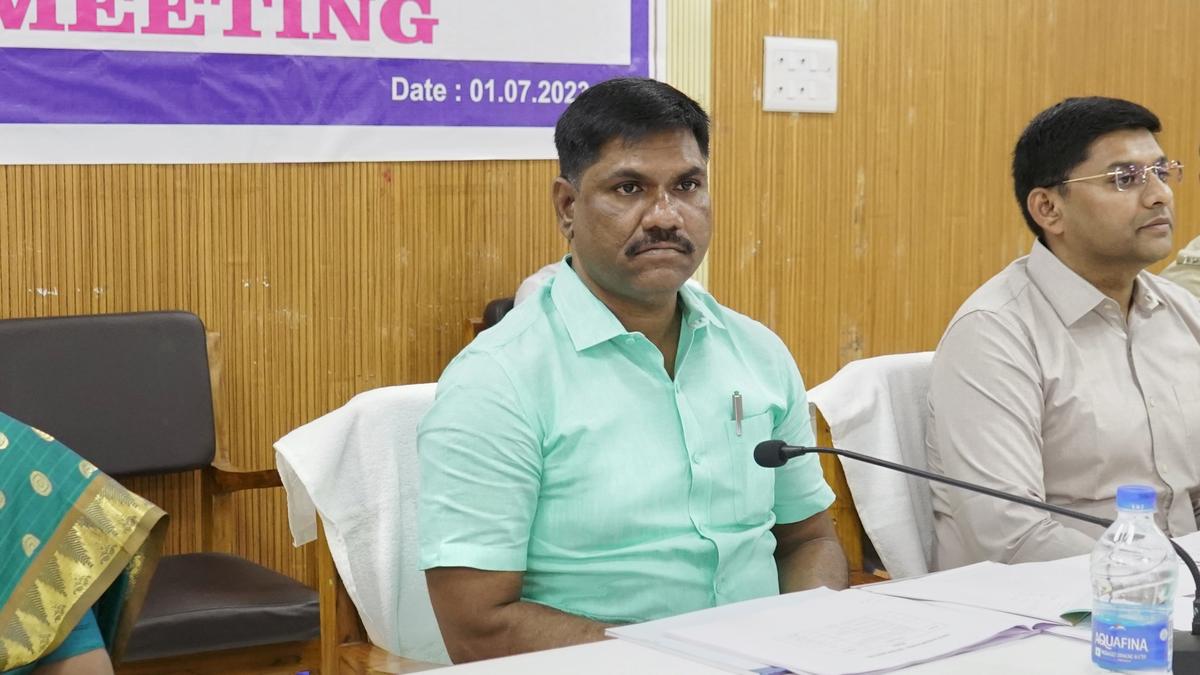
- 11 Feb 2025
In News:
The Union Cabinet, on February 7, 2025, approved the extension of the tenure of the National Commission for SafaiKaramcharis (NCSK) for three years beyond March 31, 2025, i.e., up to March 31, 2028.
The move is aimed at sustaining efforts to eradicate manual scavenging, improve the welfare of sanitation workers, and achieve zero fatalities in hazardous cleaning activities. The extension involves a financial outlay of ?50.91 crore.
Background and Legal Status
- Constitution: NCSK was established in August 1994 under the National Commission for SafaiKaramcharis Act, 1993 as a statutory body.
- Post-2004 Status: The statutory Act lapsed in 2004, and since then, NCSK has functioned as a non-statutory body under the Ministry of Social Justice and Empowerment, with periodic extensions.
- Current Demand: The current Chairperson, M. Venkatesan, has welcomed the extension but stressed the need for granting statutory status to the commission to enhance its authority and effectiveness.
Mandate and Functions
As per Government Notification and MS Act, 2013:
- Policy Recommendations:Recommend specific programmes of action to eliminate inequalities in the status, facilities, and opportunities of SafaiKaramcharis.
- Monitoring and Evaluation:
- Study and evaluate implementation of welfare schemes and programmes.
- Monitor working conditions, including health, safety, and wages of sanitation workers.
- Grievance Redressal:
- Investigate specific complaints and take suomotu cognizance of non-implementation of policies or schemes related to SafaiKaramcharis.
- Report to governments on issues affecting SafaiKaramcharis.
- Role under the Prohibition of Employment as Manual Scavengers and their Rehabilitation Act, 2013:
- Monitor the implementation of the Act.
- Enquire into violations, and convey findings with recommendations to authorities.
- Advise the Centre and States on effective implementation.
- Take suomotu notice of non-compliance.
- Data Collection:
- NCSK remains the only national body tracking sewer and septic tank deaths.
Significance of the Extension
- Aims to improve working conditions in the sanitation sector.
- Supports the socio-economic upliftment of one of the most marginalized communities in India.
- Enhances implementation of manual scavenging prohibition laws.
- Facilitates rehabilitation and dignity for sanitation workers.
- Aligns with the broader vision of inclusive development and social justice.
Pinaka Multiple Rocket Launch System (MRLS)
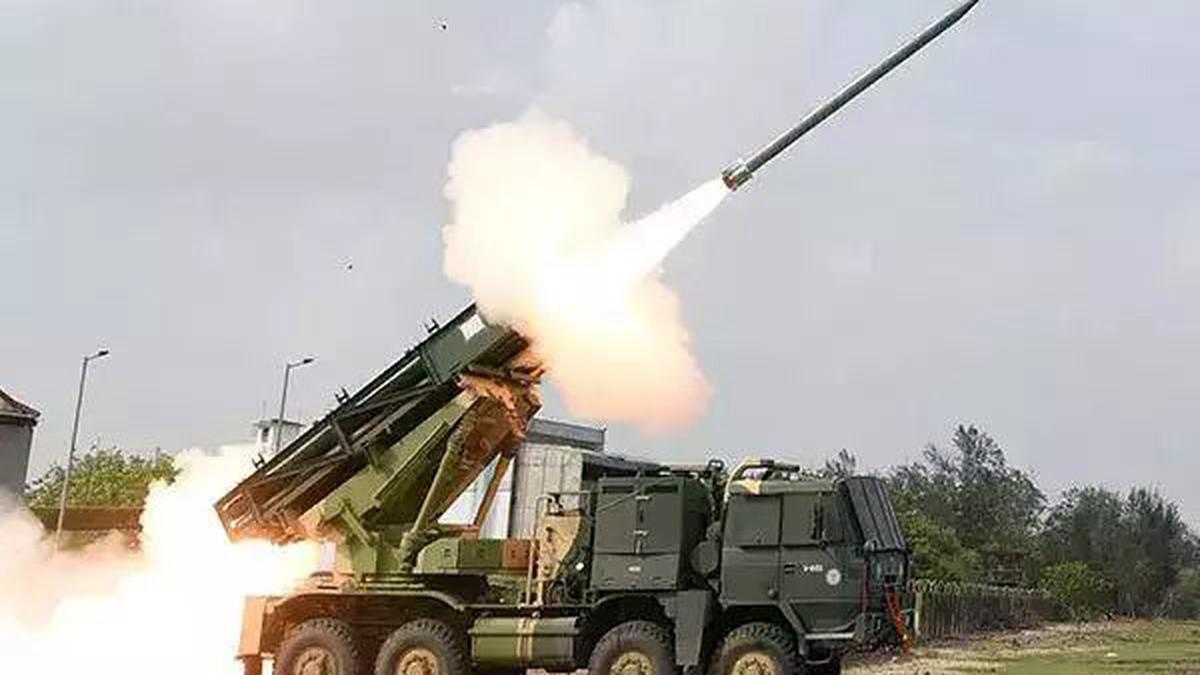
- 11 Feb 2025
In News:
In a significant step towards modernizing India's artillery capabilities, the Union Ministry of Defence signed contracts worth ?10,147 crore on February 6, 2025, for the procurement of advanced ammunition for the Pinaka Multiple Rocket Launch System (MRLS).
These agreements were concluded with Economic Explosives Limited (EEL) and Munitions India Limited (MIL) for the acquisition of Area Denial Munition (ADM) Type-1 and High Explosive Pre-Fragmented (HEPF)-Mk-1 (enhanced) rockets, respectively.
Pinaka MRLS: An Overview
- Type: All-weather, battle-proven, indirect fire Artillery Weapon System.
- Developer: Armament Research and Development Establishment (ARDE) of DRDO.
- Combat History: First used effectively during the Kargil War, neutralising enemy positions on mountain tops.
- Mobility: Mounted on Tatra trucks, providing high mobility and quick deployment.
- Payload & Firing Capacity:
- Each launcher: 12 rockets.
- Each battery: 6 launchers = 72 rockets.
- Capable of delivering a full salvo in 44 seconds.
- Range:
- Initial range: 60–75 km.
- Guided Pinaka (Pinaka-G) extends range to 75 km, with future plans to extend up to 120 km and eventually 300 km.
- Precision: The guided version uses INS/GPS navigation, allowing high accuracy against critical and time-sensitive targets.
- Warhead Types: High-explosive and submunitions, suitable for a wide variety of targets.
New Ammunition Contracts: Enhancing Lethality
The contracts include the procurement of:
- ADM Type-1: Equipped with specialised warheads designed to disperse sub-munitions over wide areas. These are effective in targeting mechanised formations, vehicles, and personnel, thereby denying area access to the enemy. These are similar to Dual Purpose Improved Conventional Munitions (DPICM).
- HEPF-Mk-1 (Enhanced): An advanced variant of the currently used HEPF rockets with extended range and improved lethality, capable of deep precision strikes in enemy territory.
In addition, a contract was signed with Bharat Electronics Limited (BEL) for upgrades to the Shakti software, which supports artillery operations.
Operational & Strategic Significance
- The upgraded Pinaka system will be the mainstay of long-range rocket artillery in the Indian Army.
- Four Pinaka regiments are already operational, with six more on order.
- The system’s development and expansion are a testament to India’s defenceindigenisation drive.
- The DRDO successfully completed flight tests of the guided Pinaka rocket with a range of 75 km, doubling its earlier reach. Future versions aim for up to 120 km and 300 km range.
Employment and MSME Impact
Besides enhancing strategic deterrence, the ?10,147 crore investment is expected to:
- Generate direct and indirect employment, particularly in the defence manufacturing ecosystem.
- Promote the Indian MSME sector, which contributes components and subsystems for the rockets and launchers.
- Support the vision of Atmanirbhar Bharat by reducing dependency on imported artillery systems.
Pong Dam Lake Wildlife Sanctuary
- 11 Feb 2025
In News:
Pong Dam Lake Wildlife Sanctuary, located in the Kangra district of Himachal Pradesh, has witnessed a record-breaking influx of migratory birds in 2025, according to the latest annual bird census conducted on February 1, 2025.
The sanctuary, a designated Ramsar Site (since 2002) and a Wetland of National Importance (1994), recorded a total of 1,53,719 birds across 97 species, indicating a sharp rise in avifaunal population and reaffirming its ecological significance.
Key Highlights from the 2025 Census
- Migratory birds recorded: 1,44,371 individuals from 55 species.
- Total bird count: 1,53,719 birds from 97 species.
- Increase from 2024: 83,555 more birds.
- Bar-headed Goose population: 90,959 (up from 37,501 in 2024) — highest ever recorded since the census began in 2004.
Other dominant waterfowl included:
- Eurasian Coots – 10,785
- Common Pochards – 9,692
- Common Teals – 8,497
- Northern Pintails – 8,053
Lesser-spotted species included the Greater and Lesser White-fronted Goose, Red Crested Pochard, and Northern Lapwing.
Reasons Behind the Surge
- Experts attribute the significant increase in bird numbers to a decline in the water level of Pong Dam Lake, which exposed additional lakebed areas, creating new feeding grounds. This has made the sanctuary increasingly attractive to birds migrating from Tibet, Central Asia, Russia, Siberia, and the Trans-Himalayan region.
Survey and Conservation Collaboration
- The census was conducted by over 100 participants, including officials from the Himachal Pradesh Forest Department, experts from the Bombay Natural History Society, Wildlife Institute of India, and local birdwatchers. The sanctuary was divided into 25 zones for comprehensive coverage.
- To further conservation efforts, a new Interpretation Centre was inaugurated on January 18, 2025, aimed at promoting awareness about the wetland's role in sustaining biodiversity and supporting migratory birds.
Ecological and Geographical Profile
Pong Dam Lake (Maharana Pratap Sagar)
- Type: Manmade reservoir formed by construction of Pong Dam on the Beas River.
- Location: Wetland zone of the Shivalik hills, Kangra district, Himachal Pradesh.
- Area: Approx. 307 sq. km — among the largest man-made wetlands in northern India.
- Importance: Key stopover on the Trans-Himalayan flyway for migratory birds.
Flora
- Vegetation types: Submerged aquatic vegetation, grasslands, forests.
- Dominant species:Eucalyptus, Acacia, Shisham.
Fauna
- Avifauna: Over 220 bird species recorded; 54 waterfowl species.
- Notable birds: Bar-headed Geese, Pintails, Pochards, Coots, Grebes, Cormorants, Herons, Storks, Grey Partridge, Peafowl.
- Mammals: Sambar, Barking Deer, Nilgai, Wild Boar, Clawless Otter, Leopard.
Rhododendron wattii
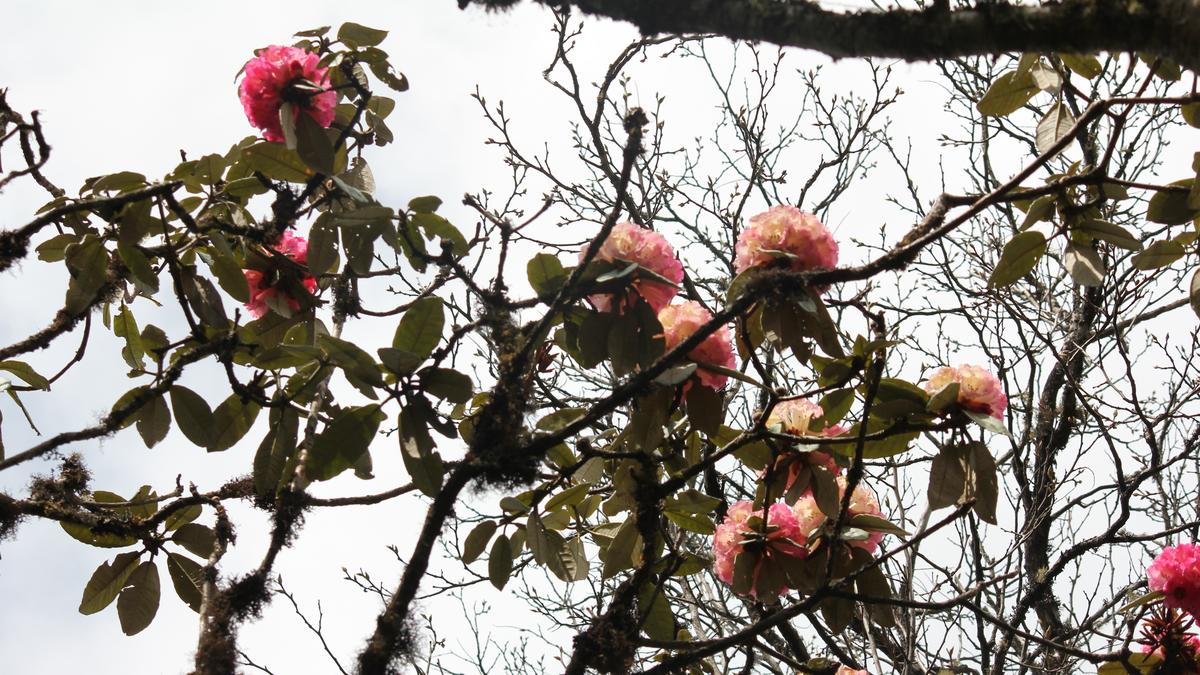
- 10 Feb 2025
In News:
A recent study has highlighted the alarming decline of the rare Rhododendron wattii, a species endemic to Nagaland and Manipur, especially in the Dzukou Valley, Nagaland. The species is now on the brink of extinction due to severe threats to its survival, raising serious conservation concerns.
Botanical Profile
- Taxonomy and Discovery:
- First collected by Sir George Watt during his 1882–85 survey in the Japfu Hill range, Nagaland.
- Belongs to the Rhododendron genus, which has over 1,000 species worldwide.
- India hosts 132 taxa, of which 129 are found in the northeastern region.
- Growth and Habitat:
- Grows as a small tree or shrub in the temperate biome.
- Attains a maximum height of 25 feet.
- Endemic to Manipur and Nagaland, predominantly in the Dzukou Valley at ~2,600 metres altitude.
- Phenological Features:
- Evergreen plant with year-round leaf renewal.
- Flowering: Late February to April.
- Fruiting:April to December.
- Produces trusses of 18–25 pink flowers with dark flecks and purplish basal blotches.
- Pollinated by the Fire-tailed Sunbird (Aethopygaignicauda) and bumble bees.
Conservation Concerns:
- Conservation Status:
- Listed as Vulnerable by the IUCN Red List due to:
- Severe population fragmentation.
- Area of occupancy less than 500 sq. km.
- Botanists at the Botanical Survey of India consider it Critically Endangered in its natural habitat.
- Listed as Vulnerable by the IUCN Red List due to:
- Threats to Survival:
- Poor seedling survivability despite abundant seed production.
- Anthropogenic pressures such as:
- Deforestation
- Habitat destruction
- Use of trees for firewood by local communities.
- Wildfires: A major fire incident in 2020–21 severely impacted the Dzukou Valley.
- The lone surviving Rhododendron wattii tree was recorded far from human trails during a recent field study.
Recent Study Highlights:
- Conducted by Imtilila Jing and S.K. Chaturvedi of Nagaland University.
- Published in the Journal of Threatened Taxa.
- Found only one living tree in the surveyed area of 27 sq. km of Dzukou Valley.
- The last previously reported tree in Nagaland (2012–13) was cut down.
Additional Botanical Development in the Region:
While the situation of Rhododendron wattii is grim, the region also witnessed a positive botanical development:
- Discovery of Phalaenopsis wilsonii, a new orchid species in Manipur’s Senapati district.
- Identified by researchers from the Institute of Bioresources and Sustainable Development (IBSD), Imphal.
- It is the ninth species of the Phalaenopsis genus recorded in Manipur.
GREAT Scheme
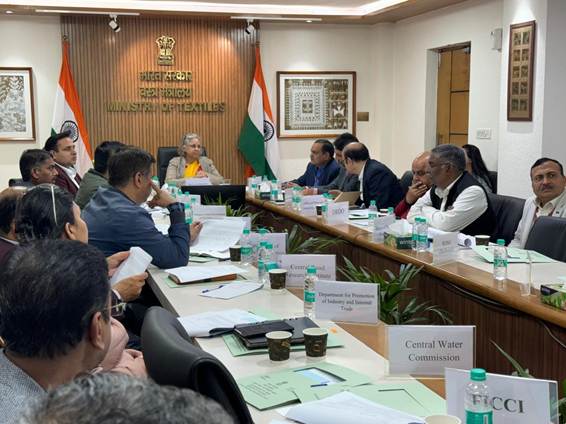
- 10 Feb 2025
In News:
The Grant for Research & Entrepreneurship across Aspiring Innovators in Technical Textiles (GREAT) scheme, launched in August 2023 under the National Technical Textiles Mission (NTTM), aims to promote startup-led innovation and entrepreneurship in the rapidly growing sector of technical textiles in India.
As of February 2025, the government has approved four startups under the scheme, providing them with financial assistance to develop commercially viable innovations.
About the GREAT Scheme:
- Objective: To encourage young innovators, scientists, and startups in the technical textiles domain to convert ideas into market-ready products or functional prototypes.
- Implementation: Operated by the Ministry of Textiles under the R&D and Innovation Component of the NTTM.
- Financial Support:
- Grants of up to Rs.50 lakh for a period of up to 18 months.
- 10% upfront contribution from startups (e.g., ?5 lakh for a ?50 lakh grant).
- No royalty or equity required by the government.
- Approved Projects: Focus areas include Medical Textiles, Industrial Textiles, and Protective Textiles.
Complementary Initiatives under NTTM:
Academic and Skill Development:
- Education Institutes:
- ?6.5 crore approved for 3 academic institutes, including IIT Indore and NIT Patna, to introduce new courses in Geotextiles, Sports Textiles, Protective Textiles, and more.
- Skill Training:
- 12 Skill Development Courses launched across application areas such as Medical, Agricultural, Mobile, and Protective Textiles.
- Developed by leading Textile Research Associations: SITRA, NITRA, and SASMIRA.
- Aim to train stakeholders across the technical textile value chain.
National Technical Textiles Mission (NTTM): An Overview
- Launched: 2020
- Nodal Ministry: Ministry of Textiles
- Total Outlay: ?1,480 crore
- Mission Goals:
- Make India a global leader in technical textiles.
- Expand the market size to $40–50 billion with 15–20% annual growth.
- Increase domestic penetration and usage of high-performance technical textiles.
Four Key Components:
- Research, Innovation, and Development
- Promotion and Market Development
- Export Promotion
- Education, Training, and Skill Development
- Sectoral Focus:Agro-textiles, Geotextiles, Medical Textiles, Industrial Textiles, Mobile Textiles, Home Textiles, Sports Textiles, Protective Textiles, and others.
- Policy Support:Includes integration with PLI schemes, PM MITRA Parks, and formulation of quality control regulations to strengthen manufacturing capabilities.
Significance for India’s Development:
- Encourages Atmanirbhar Bharat through self-reliant manufacturing and innovation.
- Strengthens India's competitiveness in high-end technical textiles for defense, healthcare, agriculture, infrastructure, and disaster response.
- Bridges the gap between lab-level R&D and market-ready products, especially by supporting startups in early innovation stages.
Grameen Credit Score
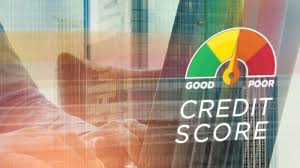
- 10 Feb 2025
In News:
The Union Budget 2025–26 introduced the Grameen Credit Score (GCS) framework as a targeted initiative to enhance access to formal credit for Self-Help Groups (SHGs) and the rural population. It reflects the government’s commitment to financial inclusion, rural empowerment, and inclusive development.
What is the Grameen Credit Score?
- The Grameen Credit Score is a rural-specific credit evaluation framework being developed by Public Sector Banks.
- It aims to formalize the credit behavior and transaction history of SHG members and rural individuals, especially women entrepreneurs, and integrate them into India’s central credit ecosystem.
- Unlike conventional credit scores (like CIBIL or CRIF Highmark), GCS is tailored to assess creditworthiness based on local financial behavior, such as SHG repayment records, informal lending history, and community participation.
Key Features and Objectives:
- Improved Credit Assessment:
- Bridges the gap in the current credit bureau systems, which often overlook rural borrowers and SHG members.
- Uses digital records and behavioral insights to provide a customized and accurate credit profile.
- Financial Inclusion:
- Targets women-led SHGs to provide better access to loans, credit cards, and microfinance products.
- Encourages rural borrowers to understand and monitor credit scores, EMIs, and repayment cycles.
- Customized Financial Products:
- Linked with the introduction of custom credit cards for micro-enterprises with credit limits of up to ?5 lakh.
- Facilitates product innovation for grassroots entrepreneurs in agriculture, MSMEs, and allied sectors.
- Support for Broader Rural Ecosystems:
- Integrated with initiatives like the SVAMITVA Scheme for property records digitization.
- Complements reforms like the transformation of India Post into a rural logistics backbone and support for cooperative sectors via the NCDC.
- Economic Empowerment:
- By expanding credit access and improving repayment discipline, GCS is expected to:
- Boost rural entrepreneurship
- Strengthen economic resilience of rural households
- Support the long-term development of the rural economy
- By expanding credit access and improving repayment discipline, GCS is expected to:
Impact on Rural Development and SHGs:
- Empowers rural women through financial independence and enterprise development.
- Enhances formal credit linkage of SHGs, reducing reliance on informal moneylenders.
- Promotes financial literacy and long-term economic stability in villages.
- Aims to be a catalyst for poverty alleviation and inclusive growth.
Gaia Black Holes
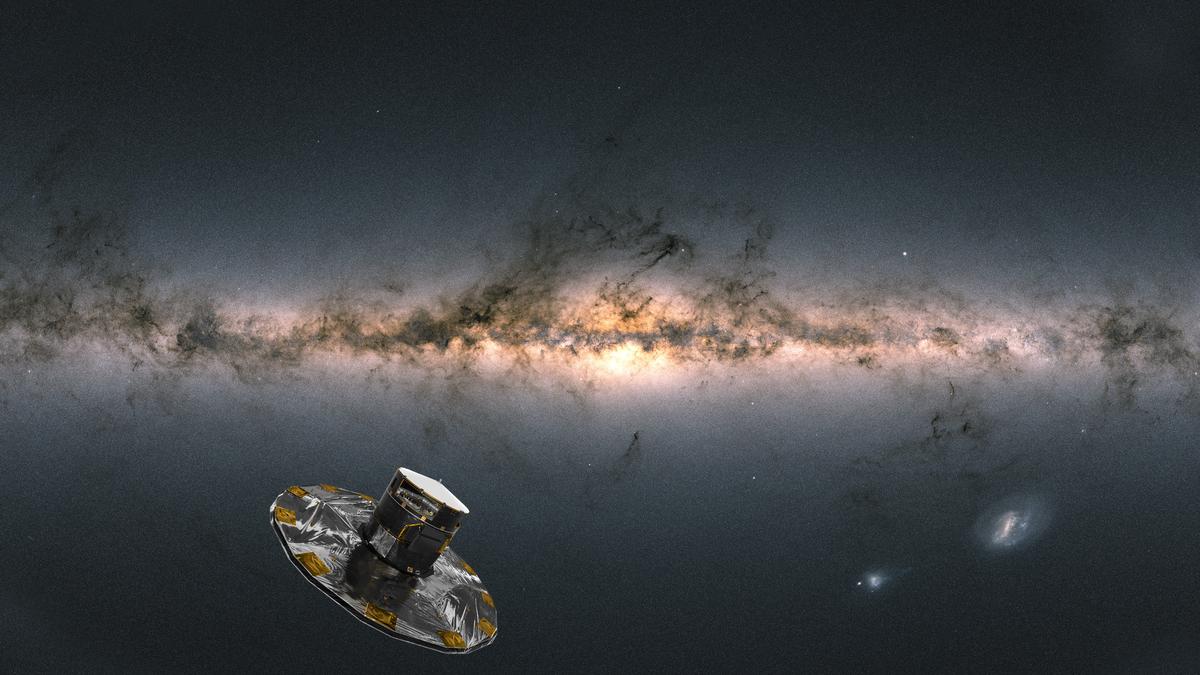
- 10 Feb 2025
In News:
The European Space Agency’s Gaia mission, launched in 2013, continues to redefine our understanding of the Milky Way by detecting celestial phenomena through precise astrometry.
One of its most significant contributions has been the discovery of dormant stellar-mass black holes that are not associated with X-ray emissions—previously the main detection method. These discoveries represent a paradigm shift in black hole detection and open new avenues for astrophysical research.
Gaia BH Series: Discovery and Significance
Gaia BH1
- Discovery Year: 2022
- Location: ~1,560 light years from Earth in the Ophiuchus constellation
- Significance:
- Closest known black hole to Earth
- Detected via a yellow star orbiting a dark mass, whose high orbital velocity implied the presence of a black hole nearly nine times the mass of the Sun
- Validated using data from LAMOST (China) and Magellan Clay Telescope (Chile)
Gaia BH2
- Discovery Year: 2023
- Location: ~3,800 light years away in the Centaurus constellation
- Mass: Around nine solar masses
- Observation Method: Tracked motion of a luminous star orbiting an unseen massive companion
Gaia BH3 – A Landmark Discovery
- Discovery Year: 2024
- Distance from Earth: ~1,926 light years (~2,000 light years), making it the second closest black hole
- Location:Aquila constellation, in the Milky Way’s outer regions
- Mass: ~33 times the mass of the Sun, making it the largest known stellar-mass black hole in the Milky Way
- Orbital Partner: A yellow giant star orbiting every 11.6 years, with an average separation similar to the Sun-Uranus distance
- Special Traits:
- It is a dormant or passive black hole, not actively accreting matter
- Lacks X-ray emissions, suggesting a scarcity of surrounding material
- Its companion star’s chemical composition indicates ancient origins, hinting that such massive black holes were formed early in the universe
Scientific Implications:
- Detection Technique Innovation:Gaia uses astrometric mapping to track the apparent motion of stars across the sky. When a star appears to orbit "empty space," astronomers infer the presence of a massive object—typically a black hole—using Kepler’s laws and the Doppler effect.
- Redefining Black Hole Census:Most black holes were previously detected through X-ray emissions. Gaia has revealed non-emitting black holes, indicating a possibly larger hidden black hole population in our galaxy.
- Historical Linkage:Black holes with masses above 30 solar masses were previously only observed through gravitational waves (LIGO/VIRGO, 2015). Gaia BH3 now provides a local, observable counterpart.
India-Japan Steel Dialogue

- 10 Feb 2025
In News:
The 3rd India-Japan Steel Dialogue was held on February 4, 2025, at Vigyan Bhavan, New Delhi, as part of the institutional mechanism under the Memorandum of Cooperation (MoC) signed between the two nations in December 2020. The dialogue was co-chaired by senior officials from India’s Ministry of Steel and Japan’s Ministry of Economy, Trade and Industry (METI).
Key Highlights and Strategic Focus Areas:
- Bilateral Steel Cooperation:The dialogue served as a platform to deepen cooperation in areas such as technology exchange, workplace safety, product diversification, and capacity building. Both nations reviewed progress under existing initiatives and reaffirmed commitment to long-term collaboration in the steel sector.
- Ease of Doing Business & Investment Support:India reiterated its commitment to facilitating ease of doing business for Japanese companies, while Japan assured continued technological and financial support for investments in advanced steel technologies in India.
- Sustainable Steel Production:India showcased recent initiatives like the Green Steel Report and the Taxonomy of Green Steel, underlining efforts to align steel production with sustainability goals and climate commitments.
- Demographic & Market Advantages:The Indian delegation highlighted the growing domestic demand driven by infrastructure investments, and the potential of India’s demographic dividend to attract foreign investment in the steel sector.
- Global Regulatory Issues – EU CBAM:Both sides discussed the European Union’s Carbon Border Adjustment Mechanism (EU CBAM), which seeks to impose carbon pricing on imports in sectors such as iron and steel, aluminum, cement, fertilizers, electricity, and hydrogen.
- CBAM Phase Timeline:
- Transitional Phase: 2023–2025 (reporting obligations)
- Full Implementation: From 2026 (financial obligations imposed)
- CBAM Phase Timeline:
Relevance:
CBAM has major implications for international steel trade, necessitating cleaner production methods and greater transparency in carbon emissions data.
Tribal Welfare in Union Budget 2025–26

- 09 Feb 2025
In News:
India is home to over 10.45 crore Scheduled Tribe (ST) individuals, comprising 8.6% of the population. Concentrated largely in remote and underdeveloped regions, ST communities face persistent challenges such as land alienation, limited access to quality education, healthcare deficits, and socio-economic exclusion. The Union Budget 2025–26 signals a paradigm shift in tribal welfare, in line with the vision of Viksit Bharat.
Budgetary Commitment
The total allocation for tribal welfare has risen to ?14,925.81 crore in 2025–26—a 45.79% jump from the previous year and a staggering 231.83% increase from 2014–15 levels. The Ministry of Tribal Affairs has witnessed a consistent rise in budget: from ?7,511.64 crore (2023–24) to ?10,237.33 crore (2024–25), and now ?14,925.81 crore.
Flagship Schemes and Initiatives
- Eklavya Model Residential Schools (EMRS) received ?7,088.60 crore, up from ?4,748 crore, to provide quality residential education to ST students. EMDBS, a pilot initiative in high-density tribal areas, enhances outreach.
- Pradhan Mantri Janjatiya Vikas Mission (PMJVM) saw a sharp rise to ?380.40 crore. It promotes tribal entrepreneurship, sustainable Minor Forest Produce (MFP) use, and value chain development.
- Pradhan Mantri Adi Adarsh Gram Yojana (PMAAGY) was allocated ?335.97 crore (163% increase). It aims to convert tribal-majority villages into model habitations by ensuring convergence of development schemes.
- PM-JANMAN Multi-Purpose Centers (MPCs) received ?300 crore, targeting Particularly Vulnerable Tribal Groups (PVTGs) with essential services and institutional support.
- Dharti Aaba Janjatiya Gram Utkarsh Abhiyan (DAJGUA), launched in 2024, envisions the holistic development of 63,843 tribal villages. With an outlay of ?79,156 crore over five years, it integrates 17 ministries and 25 interventions. The Ministry of Tribal Affairs has allocated ?2,000 crore for 2025–26 alone.
Persistent Challenges
Despite constitutional safeguards (Articles 15(4), 46, 244, 275(1), etc.), tribal communities face significant hurdles:
- Land and Resource Rights: Only 50% of 42.76 lakh Forest Rights Act (FRA) claims have been approved (MoTA, 2022). Displacement from mining and infrastructure projects persists.
- Education: ST literacy stands at 59% (Census 2011) with high dropout rates due to poverty and language gaps.
- Health: Malnutrition, maternal mortality, and diseases like Sickle Cell remain endemic.
- Marginalization: Tribals face economic deprivation, exploitation (bonded labor, trafficking), and erosion of cultural identity.
- Underrepresentation: Despite reserved seats, policy influence remains limited.
The Way Forward
- Land Rights: Effective implementation of FRA and safeguards against forced displacement.
- Education: Expand EMRS/EMDBS and promote bilingual, culturally relevant curricula.
- Health: Improve rural health infrastructure and target tribal-specific diseases.
- Women’s Empowerment: Support SHGs and skill-based livelihood through schemes like Adivasi Mahila Sashaktikaran Yojana.
- Cultural Continuity: Support tribal art, festivals, and language preservation through digital and educational platforms.
- Inclusive Governance: Strengthen Gram Sabhas and tribal representation in policymaking.
Dunki Routes
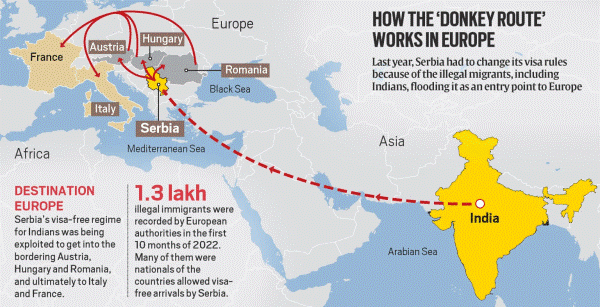
- 09 Feb 2025
In News:
Recently, a US military aircraft carrying 104 deported Indian nationals landed at Amritsar Airport. These deportees had entered the United States through the illegal “Dunki” route, paying between ?30 lakh and ?1 crore to agents and human traffickers.
Since 2009, over 15,000 Indians have been deported from the US for illegal entry, with India now figuring among the top non-Latin American countries in deportation rankings.
What is the ‘Dunki Route’?
- The “Dunki” or “Donkey” route refers to an unauthorised, arduous journey that migrants undertake through multiple countries to reach destinations like the United States, bypassing legal immigration processes.
- Routes often begin in countries with visa-on-arrival access or easy tourist visa policies for Indians:
- Latin America: Ecuador, Bolivia, Guyana, Brazil, Venezuela
- Europe/Central Asia: Azerbaijan, Turkey, Kazakhstan
- Southeast Asia: Malaysia (via Bangkok)
- Migrants often transit through Mexico, Guatemala, or Costa Rica before crossing into the US through illegal land borders.
How the Network Operates:
- Human trafficking syndicates use fake or manipulated visas (e.g., Schengen visas) to move migrants across Europe, Central Asia, and Latin America.
- Indian passport holders are sent to countries with lenient visa regimes, followed by overland or sea routes to US borders.
- Delhi Police (IGI unit) revealed that many migrants travel to Turkey or Kazakhstan and then cross to Russia or Latin America before attempting US entry.
Reasons Behind Illegal Migration:
- Economic Opportunities: Low wages in India drive migration to higher-paying economies.
- Limited Legal Avenues: Long, uncertain visa approval processes discourage legal pathways.
- Cultural Pressures: In communities like the Patels of Gujarat, migration to the US is tied to social prestige, often compelling families to sell land or take loans.
- Success Stories: Stories of successful illegal migrants inspire others to follow suit.
- Thriving Smuggling Rackets: Demand for migration has led to lucrative smuggling networks.
Consequences and Risks:
- Human Cost: Migrants risk robbery, assault, rape, and death, with bodies often unrecovered.
- Economic Loss: Families face financial ruin due to heavy agent fees.
- Legal Repercussions: Deportation, detention, and blacklisting from future visas.
- Geopolitical Sensitivity: Damages bilateral ties with countries like the US and strains consular systems.
Government Response and Policy Measures:
Proposed Legislation:
- India is considering the Overseas Mobility (Facilitation and Welfare) Bill, 2024 to:
- Promote safe, orderly, and regular migration
- Replace the outdated Emigration Act, 1983
- Establish comprehensive mechanisms for migrant protection and regulation
Awareness Campaigns:
- Indian embassies and consulates regularly issue:
- Advisories on fraudulent agents
- Guidance on safe migration
- Lists of registered recruiting agencies
Migration Trends and Global Standing:
- World Migration Report 2024 (IOM):
- India received $111 billion in remittances in 2022 – highest globally
- India is the largest country of origin for international migrants, with large diasporas in the UAE, US, and Saudi Arabia
H-1B Visa: The Legal Face of Indian Migration to the US
- H-1B Program: Allows US employers to hire foreign workers in high-skill occupations requiring at least a bachelor’s degree.
- Duration: Maximum of six years, renewable under certain conditions, or convertible into a Green Card.
- Indian Dominance:
- Indians have accounted for over 70% of all H-1B visa approvals since 2015
- Chinese applicants make up the second-largest group (~12–13%)
Political Challenges:
- Immigration, including H-1B, is a polarising issue in US politics.
- Rising anti-immigration sentiment, especially under administrations like Trump 2.0, affects policy and visa quotas.
Hotspot States and Migration Routes in India:
- Major source states of illegal migrants: Gujarat, Punjab, Haryana
- These regions are hubs for agents who facilitate illegal migration using Dunki routes and exploit aspirational youth.
Ranikhet Disease in India
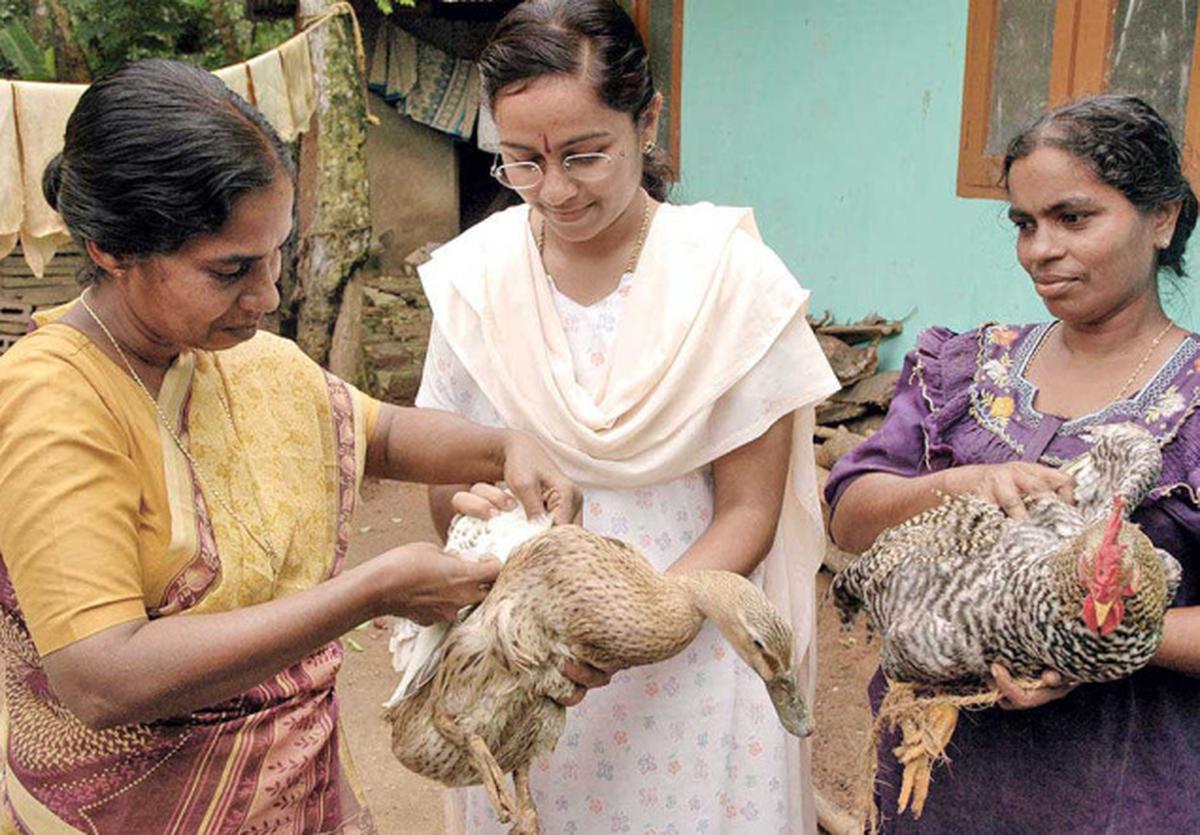
- 09 Feb 2025
In News:
Recent outbreaks of suspected Ranikhet disease (Newcastle Disease) have caused the death of approximately 1.5 lakh chickens in poultry farms across Andhra Pradesh (Eluru, Guntur, Prakasam, and the Godavari districts) and Haryana (Barwala and Raipur Rani in Panchkula). These outbreaks have raised alarms about biosecurity measures, especially in regions that are major poultry producers.
About Ranikhet Disease:
- Also known as: Newcastle Disease (ND)
- Causative Agent: Avian avulavirus 1 (also called Avian Paramyxovirus-1 or APMV-1)
- Affected Species: Primarily chickens, but also turkeys, ducks, pigeons, crows, geese, guinea fowls, partridges, doves, and even hedgehogs (suspected reservoirs).
- Nature of Disease: Highly contagious and fatal viral disease.
- Transmission:
- Direct contact with infected bird secretions (especially feces)
- Contaminated feed, water, equipment, clothing, and environment
- ND virus can survive for weeks in cool environments, increasing risk in winter.
Symptoms and Impact:
- In Birds:
- Respiratory issues: Sneezing, gasping
- Nervous symptoms: Droopiness, loss of coordination
- Digestive symptoms: Diarrhea
- Mortality rate: Ranges from 50% to 100%
- Production impact: Drop in egg production and fertility
- In Humans:
- Mild zoonotic effect, primarily conjunctivitis in people handling infected birds or lab samples.
- Usually self-limiting and non-fatal.
Recent Outbreaks and Investigations:
Andhra Pradesh:
- Approximately 1.5 lakh birds have died across multiple districts.
- Suspected cause: Highly virulent strain of Ranikhet Disease.
Haryana (Barwala–Raipur Rani belt):
- This belt houses around 115 poultry farms and is the second-largest poultry producer in Asia.
- Previously affected by bird flu outbreaks in 2006 and 2014.
- Northern Regional Disease Diagnostic Laboratory (NRDDL), Jalandhar collected 40 new samples from affected farms after being unsatisfied with earlier ones.
- Preliminary suspicion points toward Ranikhet Disease; however, cold wave conditions and the presence of older birds (not replaced due to COVID-19 restrictions) may have also contributed.
- The region falls in the path of migratory birds, whose droppings can spread avian flu viruses, complicating disease identification.
Current Challenges:
- Lack of effective treatment: No curative treatment exists. Management relies on preventive vaccination, biosecurity measures, and good poultry housing practices.
- Diagnostic delays: Require reliable sampling and laboratory testing to confirm the cause.
- Climate sensitivity: Poultry are vulnerable to extreme cold, especially if housing and care are inadequate.
- Pandemic aftershocks: COVID-19 disruptions prevented the routine replacement of older birds, increasing vulnerability.
PRASHAD Scheme

- 09 Feb 2025
In News:
The Parliamentary Standing Committee on Transport, Tourism and Culture has raised concerns over delays in the completion of projects under the Spiritual Tourism Circuits and the PRASHAD Scheme.
It has recommended the establishment of a Standard Operating Procedure (SOP) and emphasized obtaining prior clearances to ensure timely execution of future projects.
About PRASHAD Scheme
- Full Form: Pilgrimage Rejuvenation and Spirituality Augmentation Drive.
- Launched: 2014–15 by the Ministry of Tourism, Government of India.
- Objective: To promote, develop, and enhance spiritual tourism infrastructure at important pilgrimage sites across India.
Aims and Objectives:
- Improve infrastructure (roads, water supply, sanitation, waste management).
- Enhance connectivity (road, rail, and air) to pilgrimage destinations.
- Preserve and conserve religious and cultural heritage sites.
- Promote eco-friendly and sustainable tourism practices.
- Increase domestic and international tourist footfall through spiritual tourism.
- Generate local employment through skill development and livelihood programmes.
Funding Model:
- 100% centrally funded for eligible components.
- Also includes voluntary contributions through Corporate Social Responsibility (CSR) and Public-Private Partnership (PPP) initiatives.
Implementation Challenges and Parliamentary Findings
Spiritual Tourism Circuits under Swadesh Darshan Scheme:
- Launched to promote thematic tourism circuits, including 23 Spiritual Circuits across India.
- Of these, five circuits remain incomplete, with two key circuits in Kerala—
- Sabarimala–Erumeli–Pampa–Sannidhanam Circuit
- Sivagiri Sree Narayana Guru Ashram Circuit
- Progress Status (as of September 2023):
- Sabarimala Circuit: 76% complete
- Sivagiri Circuit: 51% complete
- Original target completion dates: June 2023 and October 2023, respectively.
Reasons for Delay:
- Lack of timely clearances from Temple Authorities.
- Administrative and coordination issues across agencies.
Committee Recommendations:
- Formulate a clear-cut SOP for the execution of spiritual tourism projects.
- Ensure pre-approval and coordination with all concerned stakeholders before initiating construction.
- Strengthen planning at the Detailed Project Report (DPR) stage to anticipate implementation challenges and avoid delays and cost overruns.
PRASHAD Scheme Performance:
- Out of 45 sanctioned projects, only 21 have been completed as of the latest report.
- The committee noted this performance as unsatisfactory, even accounting for disruptions due to the COVID-19 pandemic.
Stryker Infantry Combat Vehicle
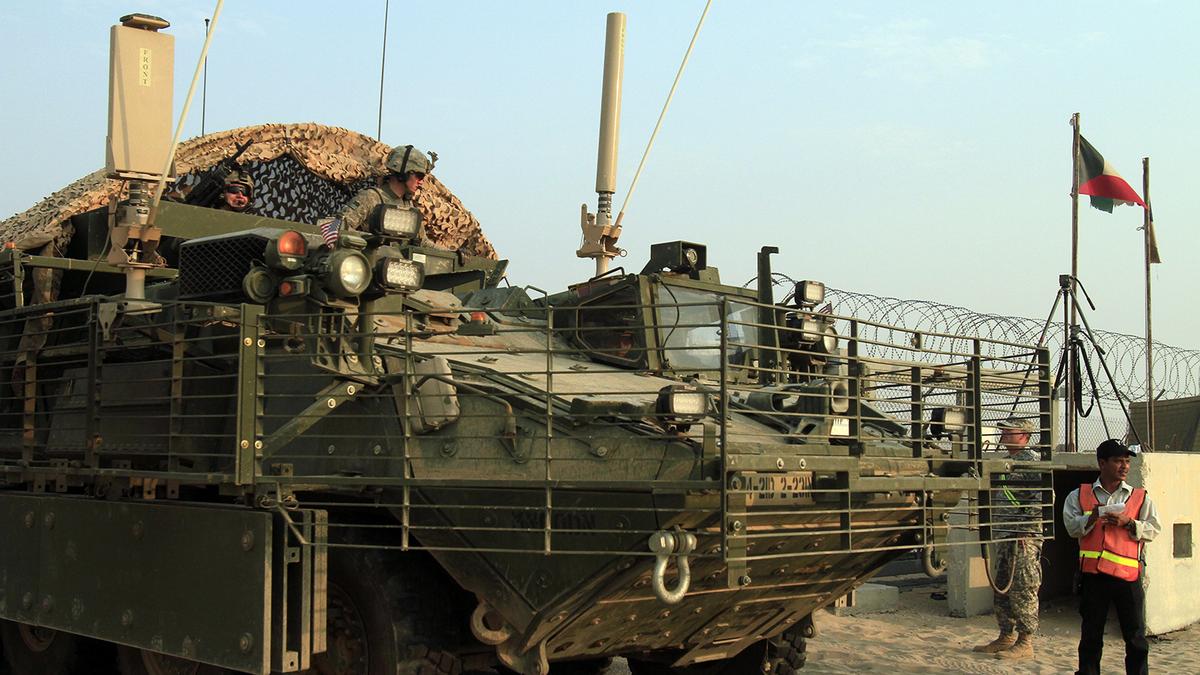
- 09 Feb 2025
In News:
India-U.S. defence cooperation is advancing with the proposed co-production of the Stryker Infantry Combat Vehicle (ICV). This deal represents a significant leap in bilateral defence industrial collaboration and aligns with India's strategic goal of military modernization and indigenisation under the ‘Make in India’ initiative.
About Stryker Infantry Combat Vehicle (ICV):
- Origin: Jointly developed by General Dynamics Land Systems (GDLS) Canada and U.S., it is the first new military vehicle inducted into U.S. Army service since the 1980s.
- Type: Eight-wheeled armoured infantry combat vehicle designed for rapid deployment and battlefield mobility.
- Variants: Includes Infantry Carrier Vehicle (ICV), Mobile Gun System (MGS), reconnaissance vehicle, medical evacuation vehicle, fire support vehicle, and Anti-Tank Guided Missile (ATGM) carrier.
Key Features:
- Mobility: Top speed of ~100 km/h and an operational range of 483 km. Can be airlifted using C-17 and C-130 aircraft (both in IAF’s fleet) or Chinook helicopters, enhancing deployment in remote terrains.
- Firepower: Equipped with a 30 mm cannon and a 105 mm mobile gun.
- Protection: V-hull structure for blast protection; composite armour reinforced with ceramic tiles offers increased survivability against IEDs and small arms.
- Capacity: Operated by a 2-member crew and can transport a 9-member infantry squad.
Operational Evaluation in India:
- High-Altitude Trials: Conducted in Ladakh (13,000–18,000 feet) during September–October 2024. Evaluation reports were shared with Army Headquarters for further review.
- Javelin ATGM Demonstration: Conducted alongside Stryker trials; however, the performance was sub-optimal due to the vintage system used. Repeat trials have been requested by India.
Strategic Importance for India:
- Tactical Advantage: Enhanced mobility and survivability in high-altitude warfare make it suitable for regions like Ladakh and Arunachal Pradesh.
- Border Security: Bolsters India's defence posture along sensitive frontiers with China and Pakistan.
- Force Modernization: Meets the Indian Army’s requirement for ICVs with integrated ATGM capabilities.
- Aatmanirbhar Bharat Push: The proposed model includes initial direct imports followed by large-scale license production in India, potentially by Bharat Earth Movers Limited (BEML).
Defence Diplomacy and Industrial Cooperation:
- The deal is being advanced under the India-U.S. Defence Industrial Cooperation Roadmap, focusing on co-development and co-production.
- In November 2023, Indian Defence Secretary confirmed discussions under this framework.
- The U.S. has reiterated the importance of India enhancing procurement of U.S.-made defence equipment, aiming at a balanced trade partnership.
- The Stryker deal is expected to feature in high-level bilateral dialogues, including the visit of Prime Minister Narendra Modi to Washington DC and during engagements at Aero India.
Challenges and Reservations:
- Some Indian defence officials have flagged concerns, noting that similar ICVs have been developed by Indian private companies.
- Delays in previous U.S. defence exports (e.g., F-404 jet engines for LCA-Mk1A) have also raised caution regarding timelines and reliability.
Fort William Renamed Vijay Durg

- 08 Feb 2025
In News:
In a significant step towards decolonising the Indian Armed Forces and aligning with indigenous historical consciousness, Fort William, the headquarters of the Eastern Command of the Indian Army in Kolkata, has been renamed Vijay Durg. This renaming is part of a broader initiative to remove colonial-era symbols and practices and restore Indian military heritage.
Historical Background of Fort William
- Construction: The original Fort William was constructed in 1696 by the English East India Company. It was later attacked and captured by Siraj-ud-Daulah, the Nawab of Bengal, in 1756.
- The Black Hole Incident: The original fort had an inner bastion used for imprisoning captives, leading to the infamous “Black Hole of Calcutta” narrative.
- Reconstruction: After the Battle of Plassey (1757) and the defeat of Siraj-ud-Daulah, Robert Clive initiated the construction of a new fort, which was completed in 1773 or 1781 (sources differ).
- Naming: It was named Fort William in honour of King William III of England.
Architectural Features
- Design: The fort is octagonal in shape with a massive structure made of brick and mortar.
- Area: Spread across 70.9 acres on the eastern bank of the Hooghly River, it features hundreds of arched windows and lush green surroundings.
- Aesthetics: Its walls are adorned with intricate stonework, reflecting colonial military architecture.
Recent Changes and Renaming
- New Name: Vijay Durg – Inspired by Vijaydurg Fort in Maharashtra, a prominent naval base of the Marathas under Chhatrapati Shivaji Maharaj.
- Other Changes:
- Kitchener House has been renamed Manekshaw House, after Field Marshal Sam Manekshaw.
- St. George’s Gate has been renamed Shivaji Gate.
- Implementation: According to the Defence Public Relations Office in Kolkata, the name change was decided in mid-December 2024, and internal communications have already adopted the new nomenclature, though an official notification is awaited.
Broader De-Colonisation Drive in Indian Defence
The renaming of Fort William is part of a larger movement initiated by the Government of India to eliminate colonial vestiges in the armed forces. Prime Minister Narendra Modi, in a 2022 speech at Kevadia, Gujarat, urged the forces to discard “legacy systems” and move towards “freedom from the mentality of slavery (gulami ki mansikta se mukti)”.
Key Initiatives:
- Indianisation of military music during the Beating Retreat ceremony.
- Adoption of a new naval ensign (2022) inspired by the seal of Chhatrapati Shivaji Maharaj, moving away from British colonial symbols.
- Renaming of military establishments and symbols rooted in colonial heritage.
- Review publication (2024) titled “Colonial Practices and the Armed Forces – A Review”, released at the Joint Commanders’ Conference in Lucknow by Defence Minister Rajnath Singh.
Mount Taranaki
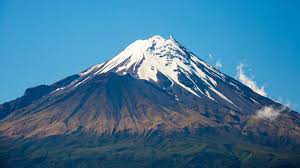
- 08 Feb 2025
In News:
In a significant legal and environmental development, Mount Taranaki—officially now known by its M?ori name Taranaki Maunga—has been granted legal personhood by the government of New Zealand.
This move marks it as the third natural feature in the country to receive such status, following the Te Urewera National Park (2014) and the Whanganui River (2017).
This recognition reflects an increasing global trend toward acknowledging the intrinsic rights of natural entities and respecting the spiritual beliefs of indigenous communities.
About Taranaki Maunga
- Location: Situated in Egmont National Park, North Island, New Zealand.
- Dual Naming: Historically known as Mount Egmont, it is now officially referred to by its indigenous name, Taranaki Maunga, as part of decolonization and cultural revival efforts.
- Elevation: Stands at 8,261 feet, making it the second-highest peak in the North Island of New Zealand.
- Geological Type: It is a stratovolcano (composite cone) with a nearly perfect symmetrical shape—one of the most symmetrical volcanic cones in the world.
- Formation: Formed due to the subduction of the Pacific Plate beneath the Australian Plate. The magma source lies deeper than that of the Taupo Volcanic Zone volcanoes.
- Topography: Surrounded by a circular ring plain formed from lahars (volcanic mudflows) and landslides.
- Status: A snow-capped dormant volcano and culturally revered natural landmark.
- Cultural Significance: The M?ori, indigenous people of New Zealand, regard Taranaki Maunga as a sacred ancestor, embedding it deeply in their oral traditions and spirituality.
Legal Personhood and Its Significance
Granting legal personhood to Taranaki Maunga means it now holds rights, duties, and liabilities akin to a legal human being, and its interests will be represented by appointed guardians—often including indigenous representatives.
This legal framework recognizes:
- The spiritual and cultural relationship that the M?ori have with the mountain.
- The need to protect natural ecosystems not merely for utility but as living entities deserving of rights and dignity.
Comparative Insights: India’s Legal Approach to Natural Entities
India has witnessed similar developments:
- Uttarakhand High Court (2017–18): Granted legal personhood to the Ganga and Yamuna rivers, along with the Gangotri and Yamunotri glaciers. However, the Supreme Court later stayed this ruling.
- Punjab and Haryana High Court (2020): Recognized Sukhna Lake (Chandigarh) as a living entity for environmental protection.
- These decisions stem from the Doctrine of Parens Patriae, which allows the state to act as a guardian for those who cannot protect themselves—extending this protection to natural entities such as rivers, forests, and wildlife.
Iskander-M

- 08 Feb 2025
In News:
In a significant defense development with wide-ranging geopolitical implications, the Russian Federation is preparing to mass-produce the Iskander-M tactical ballistic missile, a new-generation weapon system with enhanced range and destructive capabilities. This move is part of Russia’s broader strategy to upgrade its missile arsenal amid ongoing tensions with NATO, especially in the context of the Ukraine conflict.
Key Features and Strategic Purpose
The 9K720 Iskander-M, developed by the Machine-Building Design Bureau (Kolomna), is a medium-range tactical ballistic missile with an effective range of up to 1,000 kilometers. It is capable of delivering both conventional and nuclear warheads, making it a versatile and high-impact weapon in regional conflict scenarios.
- The missile is precision-targeted and designed to neutralize high-value enemy assets, including NATO’s military infrastructure in Eastern Europe, especially in Ukraine.
- The production of the upgraded missile, unofficially referred to as the Iskander-1000, is expected to begin in full swing by 2025.
- The missile is reported to be highly destructive, with the ability to conduct deep strikes with minimal detection, offering Russia a tactical advantage in asymmetric warfare.
Deployment of Oreshnik Missile Systems in Belarus
In a parallel development, Russia has confirmed the deployment of Oreshnik medium-range ballistic missile systems in Belarus, a strategic ally. This decision follows agreements between the Russian and Belarusian leadership, reinforcing the military integration under their collective defense pact.
- The Oreshnik system, though less publicly detailed than the Iskander, is designed for tactical use and contributes to enhancing Russia’s regional defense shield.
- According to Russian foreign ministry officials, Belarus already hosts a joint Regional Forces Group, non-strategic nuclear weapons, and modern Russian defense systems.
- The positioning of these systems near NATO’s eastern borders heightens tensions with Western powers, particularly the United States, Poland, the Baltic States, and the European Union.
Geopolitical Ramifications
The Iskander-M and Oreshnik missile programs are part of Russia’s strategic doctrine to deter NATO's influence and reassert its military dominance in Eastern Europe. These deployments are:
- Likely to escalate NATO-Russia tensions, increasing the risk of a regional arms race.
- Expected to complicate European security dynamics, especially in Poland, Ukraine, and the Baltic states, which are seen as potential frontlines.
- Raising the prospect of further military escalation in the ongoing Russia-Ukraine conflict.
- Prompting NATO countermeasures, including deployment of missile defense systems and increased troop presence near Eastern borders.
Brucellosis Outbreak in Kerala

- 08 Feb 2025
In News:
An eight-year-old girl, Shasa Fathima, from Kottakkal in Malappuram district, Kerala, recently died after undergoing nearly two months of treatment for brucellosis at the Government Medical College Hospital, Kozhikode. This tragic incident has renewed public health concerns regarding zoonotic infections in India.
What is Brucellosis?
According to the World Health Organization (WHO), brucellosis is a bacterial disease caused by various species of the genus Brucella. The bacteria primarily infect: cattle, swine, goats, sheep & dogs.
Humans typically contract the infection through:
- Direct contact with infected animals or their secretions (blood, placenta, fetus, uterine fluids)
- Ingestion of contaminated animal products, especially unpasteurised milk and cheese
- Inhalation of airborne bacteria (e.g., in lab or farm environments)
Human-to-human transmission is extremely rare, as per WHO guidelines.
Symptoms and Incubation Period
- The disease presents a wide spectrum of symptoms: fever, weakness, weight loss, general discomfort or malaise.
- In many cases, symptoms may be mild or go undiagnosed. The incubation period ranges from one week to two months, most commonly between two to four weeks.
At-Risk Populations
- Brucellosis can affect individuals of all age groups. However, certain occupational groups are at higher risk, including: farmers and dairy workers, butchers, hunters, veterinarians, laboratory personnel. These individuals are often exposed to animal blood and reproductive fluids, which are primary modes of transmission.
Status in Kerala
Kerala has reported sporadic cases of brucellosis in recent years. In 2023, cases emerged from Kollam (July) and Thiruvananthapuram (October). While the disease is not new to the state, fatalities remain rare.
In response, the Department of Animal Husbandry has initiated awareness campaigns for dairy farmers and conducted milk sample testing across cooperative societies to monitor possible sources of infection.
Treatment and Prevention
Treatment typically involves a combination of antibiotics:
- Doxycycline (100 mg, twice daily for 45 days)
- Streptomycin (1 g daily for 15 days)
Effective preventive measures include:
- Vaccination of livestock (cattle, goats, sheep)
- Pasteurisation of milk and dairy products before human consumption
- Public awareness campaigns on the dangers of consuming unpasteurised animal products
- Regulatory policies on the sale of raw milk
Bryospilus Bharaticus

- 08 Feb 2025
In News:
A new species of water flea, Bryospilus (Indobryospilus) bharaticus n. sp., was recently discovered from moss growth on the walls of the Korigad Fort near Pune, Maharashtra.
This marks the first recorded discovery of the genus Bryospilus in Tropical Asia, underscoring the ecological uniqueness of the Western Ghats, a UNESCO World Heritage biodiversity hotspot.
Taxonomic and Morphological Highlights
- It belongs to the genus Bryospilus, a group of tiny crustaceans known as water fleas, which typically inhabit rivers, ponds, and pools.
- The species displays adaptations for semi-terrestrial life, notably using its antennae with large spines for crawling through thick, debris-laden water films on moss surfaces.
- It lacks a main eye—an evolutionary adaptation to low-light habitats where color vision is unnecessary for foraging.
Ecological and Evolutionary Significance
- The genus Bryospilus includes species found in semi-terrestrial habitats in rainforests of West Africa, South and Central America, and New Zealand, making this Indian discovery a significant biogeographical addition.
- The organism’s relatives are typically found in littoral (vegetated) zones of water bodies, whereas some occur in open waters.
- The researchers suggest that ancestors of this species existed on the Indian subcontinent prior to the breakup of Gondwanaland, around 200 million years ago, hinting at Bryospilus bharaticus as a potential Gondwanan relict species.
- Each known Bryospilus species has been isolated to a specific former Gondwanan continent, reinforcing the evolutionary legacy of this find.
Research and Conservation Implications
- The discovery was part of an ongoing survey of underexplored crustacean taxa in the Western Ghats, led by Sameer Padhye and Kan Van Damme, and published in the Journal of Crustacean Biology (Oxford Academic, Sept 2024).
- The species was found in pristine, undisturbed moss habitats on Deccan Plateau hill forts, highlighting the importance of conserving such microhabitats.
- Zooplankton like water fleas are highly sensitive to environmental changes and serve as bioindicators of ecological health. The presence of B. bharaticus indicates low human disturbance in its habitat.
- The authors warn that air pollution and habitat disturbance could threaten these fragile ecosystems and stress the urgency of habitat protection, especially for organisms invisible to the naked eye.
Shatavari

- 07 Feb 2025
In News:
The Ministry of Ayush has launched a nationwide campaign titled “Shatavari – For Better Health” to raise public awareness on the health benefits of Asparagus racemosus (commonly known as Shatavari), especially in the context of women’s health and the broader objective of holistic well-being.
About Shatavari (Asparagus racemosus)
- Family: Asparagaceae (formerly Liliaceae)
- Common Names: Satawar, Satamuli
- Ayurvedic Significance: Known as the “Queen of Herbs”, Shatavari is praised in classical Ayurvedic texts like Charak Samhita and Ashtang Hridayam for treating women’s reproductive health disorders.
- Name Meaning: ‘Shatavari’ translates to “acceptable to many”, signifying its diverse benefits.
- Botanical Description: It is a woody climber (1–2 meters tall), with pine-needle-like leaves and small white flowers.
- Habitat and Distribution: Found in tropical climates at low altitudes across Asia, Africa, and Australia.
Medicinal Uses
- The dried roots of Shatavari are used medicinally.
- Acts as a tonic, diuretic, galactagogue (promotes lactation), and has ulcer-healing properties.
- Strengthens mucosal resistance and provides cytoprotection.
- Widely used for addressing female reproductive health issues, immunity enhancement, and promoting overall vitality.
The Campaign: “Shatavari – For Better Health”
- Launched by: Shri Prataprao Jadhav, MoS (Independent Charge), Ministry of Ayush.
- Organized by: National Medicinal Plants Board (NMPB).
- This campaign follows successful species-specific initiatives on Amla, Moringa, Giloe, and Ashwagandha.
- Shatavari is being positioned as a crucial resource in advancing women’s health, supporting the Panch Pran Goals set by the Prime Minister for a Developed India by 2047.
- Focus on achieving holistic well-being and integrating traditional medicine with public health awareness.
Policy and Financial Support
- Under the Central Sector Scheme for Conservation, Development, and Sustainable Management of Medicinal Plants, the Ministry promotes the cultivation and sustainable use of Shatavari.
- Financial assistance of ?18.9 lakhs will be provided to eligible organizations to support awareness and adoption.
National Youth Parliament Scheme (NYPS) 2.0
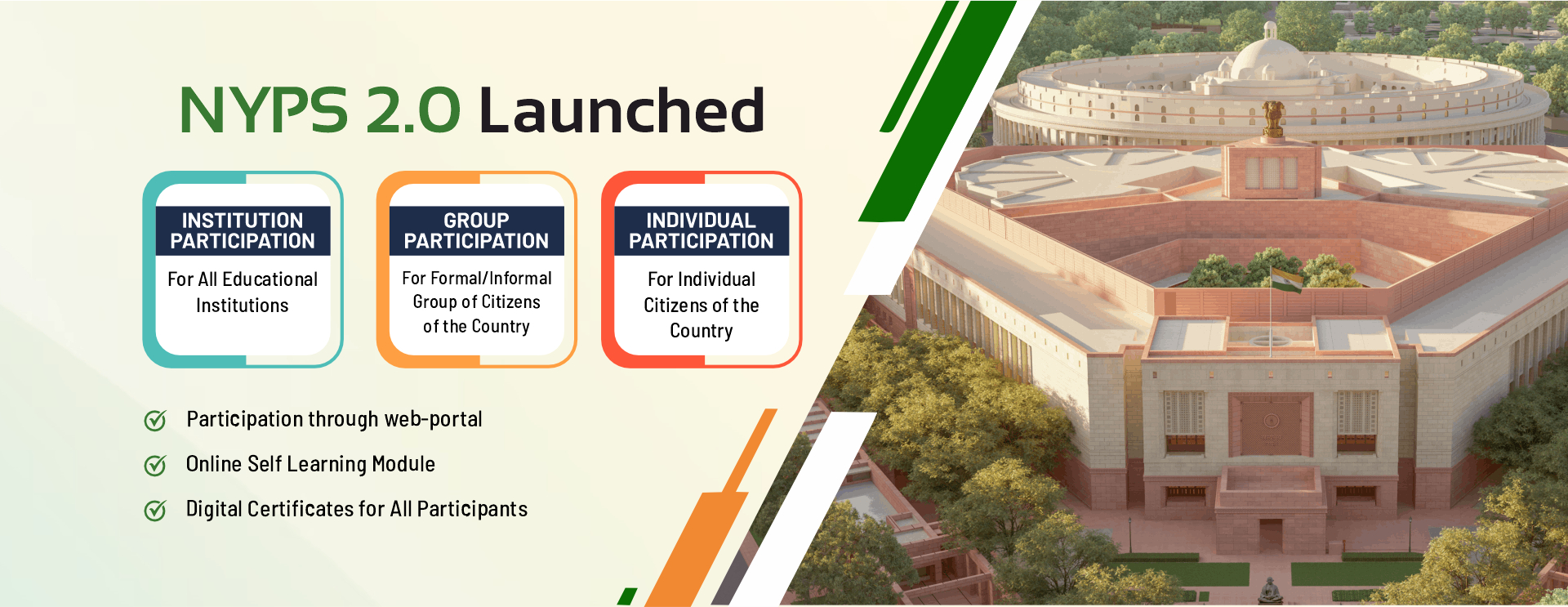
- 07 Feb 2025
In News:
The Ministry of Parliamentary Affairs has recently provided updates in the Rajya Sabha on the National Youth Parliament Scheme (NYPS) 2.0, emphasizing its role in fostering democratic values, constitutional awareness, and active citizenship among Indian youth.
About NYPS 2.0
Launched by the Ministry of Parliamentary Affairs, NYPS 2.0 aims to strengthen the roots of democracy and enhance understanding of parliamentary practices and government functioning among citizens, especially students.
Objectives
- Instill discipline, tolerance for diverse views, and democratic ethos among youth.
- Educate students about the procedures of Parliament, constitutional values, and functioning of the government.
- Encourage a democratic way of life through civic engagement.
Participation Modes via NYPS 2.0 Web Portal
The dedicated web-portal enables inclusive citizen participation in three formats:
- Institutional Participation:
- Open to all educational institutions.
- Institutions can organize Youth Parliament sittings as per portal guidelines.
- Two sub-categories:
- Kishore Sabha: For students of Class VI to XII.
- Tarun Sabha: For undergraduate and postgraduate students.
- Group Participation: Open to any group of citizens willing to conduct Youth Parliament sittings under defined norms.
- Individual Participation: Citizens can individually engage by taking a quiz on the theme ‘Bhartiya Democracy in Action’.
Training and Educational Resources
To support participants, the portal offers comprehensive e-training material, including:
- Literature on Youth Parliament
- Model Debates, Questions, and List of Business
- Model Scripts
- Video tutorials and other interactive resources
National Policy for Rare Diseases (NPRD) 2021
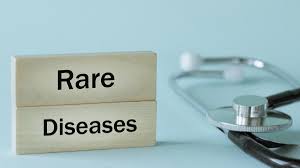
- 07 Feb 2025
In News:
Patient advocacy groups across India have raised serious concerns over delays in implementing the National Policy for Rare Diseases (NPRD) 2021, which has left many rare disease patients — especially children — in life-threatening situations. They have urged the government for immediate intervention to resume life-saving treatments and release stalled funds under the policy.
Rare Diseases:
- Rare diseases are severe, often genetic, life-threatening disorders that impact a small percentage of the population.
- They disproportionately affect children, with 30% of diagnosed patients not surviving beyond age five without timely treatment.
- Examples include Lysosomal Storage Disorders (LSDs) such as Gaucher, Pompe, Fabry, and MPS I & II.
About NPRD 2021
The Ministry of Health & Family Welfare launched the National Policy for Rare Diseases in March 2021 to streamline the diagnosis, research, and treatment of rare diseases in India.
Key Features of NPRD 2021:
- 63 rare diseases currently included under the policy (as recommended by the Central Technical Committee for Rare Diseases (CTCRD)).
- Categorization of diseases into three groups:
- Group 1: Diseases amenable to one-time curative treatment.
- Group 2: Diseases requiring long-term/lifelong treatment with relatively lower cost.
- Group 3: Diseases requiring very high-cost lifelong therapy where patient selection is critical.
Institutional Support:
- 12 Centres of Excellence (CoEs) identified at premier government hospitals to provide diagnosis and treatment.
- Nidan Kendras established to provide genetic testing and counselling services.
- National Consortium for Research and Development on Therapeutics for Rare Diseases (NCRDTRD) set up to coordinate R&D and promote indigenous drug manufacturing.
- Tax exemptions (on GST and Customs Duty) granted for imported drugs for individual and institutional use.
Financial Provisions:
- Financial assistance of up to ?50 lakh per patient for treatment at CoEs.
- Patients must register at CoEs to receive diagnosis and initiate treatment.
Challenges and Crisis
Despite policy provisions, implementation has been stalled, leading to a healthcare emergency for rare disease patients.
Key Issues Raised:
- Insufficient funding: The ?50 lakh cap is inadequate for chronic and ultra-rare diseases that need lifelong therapy.
- Administrative delays: Fund disbursement to CoEs has been slow, disrupting continuity of treatment.
- Impact on Patients:
- Patients like Alishba Khan, Ashok Kumar, Imran Ghoshi, and Adrija Mudy with Gaucher or MPS I have exhausted their funding.
- Patients who had previously stabilized are now regressing due to interrupted therapy at leading hospitals like AIIMS Delhi, IGICH Bangalore, and IPGMER Kolkata.
Legal Developments:
- On October 4, 2024, the Delhi High Court directed the Ministry of Health and Family Welfare to:
- Release additional funds beyond the ?50 lakh limit.
- Create a ?974 crore National Fund for FY 2024–25 and 2025–26.
- Months later, no concrete action has been taken, further eroding trust in the policy's effectiveness.
Demands by Advocacy Groups
- Sustainable, long-term funding model for lifelong treatment of rare and ultra-rare diseases.
- Immediate fund release to CoEs and simplification of administrative processes.
- Ensure uninterrupted access to essential therapies and expand the scope of financial support.
Rheumatoid Arthritis (RA)
- 07 Feb 2025
In News:
Researchers from the Institute of Nano Science and Technology (INST), Mohali, an autonomous institute under the Department of Science and Technology (DST), have developed an innovative “self-actuating” drug delivery system that targets rheumatoid arthritis (RA) by delivering therapeutic agents only when needed. This approach offers a revolutionary alternative to conventional systemic treatments.
About Rheumatoid Arthritis (RA)
- Definition: RA is a chronic autoimmune and inflammatory disease where the body’s immune system mistakenly attacks healthy cells, particularly the joints, causing inflammation and tissue damage.
- Commonly Affected Areas: Hands, wrists, and knees — often multiple joints simultaneously.
- Symptoms:
- Inflammation of joint lining
- Chronic pain and joint deformity
- Unsteadiness or balance issues
- May affect lungs, heart, and eyes
- Cause: The exact cause remains unknown, but it involves an immune response attacking the body’s own tissues.
- Traditional Treatment:
- Involves Disease-Modifying Antirheumatic Drugs (DMARDs) such as methotrexate
- Requires frequent dosing
- May lead to systemic side effects and inefficient drug retention
Breakthrough: Self-Actuating Drug Delivery System
Key Features:
- Targeted Drug Release: Releases medication only in response to biochemical signals in the inflamed synovial environment of RA-affected joints.
- Precision and Safety: Reduces side effects by limiting drug release to flare-ups, minimizing exposure to unaffected areas.
- Main Drug Used: Methotrexate, a widely used anti-rheumatic drug.
Mechanism:
- Microspheres are engineered using polymer-lipid hybrid micro-composites:
- Lipid Component (Soya Lecithin): Ensures high drug encapsulation efficiency.
- Polymer Component (Gelatin): Reacts to Matrix Metalloproteinases (MMPs) — enzymes present during RA inflammation.
- Action:
- Enzymes like MMP-2 and MMP-9 increase during RA flare-ups.
- These enzymes cleave the gelatin, triggering controlled, pulsatile release of methotrexate.
- Outcome in Animal Studies:
- Reduced joint swelling and cartilage damage
- Promoted joint repair
- Improved drug bioavailability and retention in joints
Significance
- Improved Patient Outcomes:
- Long-lasting relief with fewer doses
- Reduced systemic toxicity
- Personalized therapy based on inflammation levels
- Enhanced joint function and slower disease progression
- Research Publication: The findings were published in the journal Biomaterial Advances.
Wider Applications
- Potential Use in:
- Other inflammatory conditions like synovitis and inflammatory bowel disease (IBD)
- Veterinary medicine for arthritis in animals
- Regenerative medicine and personalized drug delivery
Extremely Large Telescope (ELT)
- 07 Feb 2025
In News:
As of early 2025, 60% of the construction of the Extremely Large Telescope (ELT) is complete. The telescope is expected to begin its first scientific observations by the end of 2028.
About ELT
The Extremely Large Telescope (ELT) is poised to become the world’s most powerful ground-based optical and infrared telescope, with revolutionary capabilities to explore the universe.
- Location: Cerro Armazones, Atacama Desert, northern Chile
- Altitude: 3,046 meters above sea level
- Managing Body: European Southern Observatory (ESO)
- Project Cost: Approximately $1.51 billion (around 1.3 billion euros)
- Completion Target: Late 2020s
- Primary Mirror: Diameter of 39 meters (128 feet) — the largest of its kind
- Constructed from 798 hexagonal segments, each 1.5 m across and 5 cm thick
Key Scientific Objectives
- Exoplanet Exploration
- Direct imaging of Earth-like exoplanets in habitable zones of nearby stars
- Analysis of atmospheric biosignatures such as oxygen, water vapor, and methane, aiding the search for extraterrestrial life
- Understanding the Early Universe
- Observation of the first stars and galaxies formed post-Big Bang
- Investigation of dark matter and dark energy, crucial for understanding cosmic expansion and the universe’s fate
- Detailed Study of Stars and Galaxies
- Identification and characterization of individual stars in distant galaxies
- Analysis of the formation, evolution, and structure of galaxies over cosmic time
- Black Holes and Cosmic Structures
- Study of supermassive black holes at galactic centers
- Understanding their role in galaxy dynamics and structure
Why Chile’s Atacama Desert?
- Dry Climate: Very low humidity and cloud cover, ensuring clearer skies
- High Altitude: Thin atmosphere reduces atmospheric interference with incoming light
- Minimal Light Pollution: Remote location offers dark skies critical for deep-space observation
- Dome Structure: Protects sensitive instruments from harsh desert conditions
About the European Southern Observatory (ESO)
- Nature: Leading intergovernmental science and technology organization in the field of astronomy
- Headquarters: Garching, Germany
- Members: 16 countries including Austria, Belgium, Brazil, France, Germany, Italy, Spain, and the United Kingdom
- Facilities in Chile:
- La Silla
- Paranal
- Chajnantor
- Mandate: Design, construction, and operation of advanced ground-based telescopes to promote international collaboration and facilitate path-breaking astronomical research
Dhimsa Dance
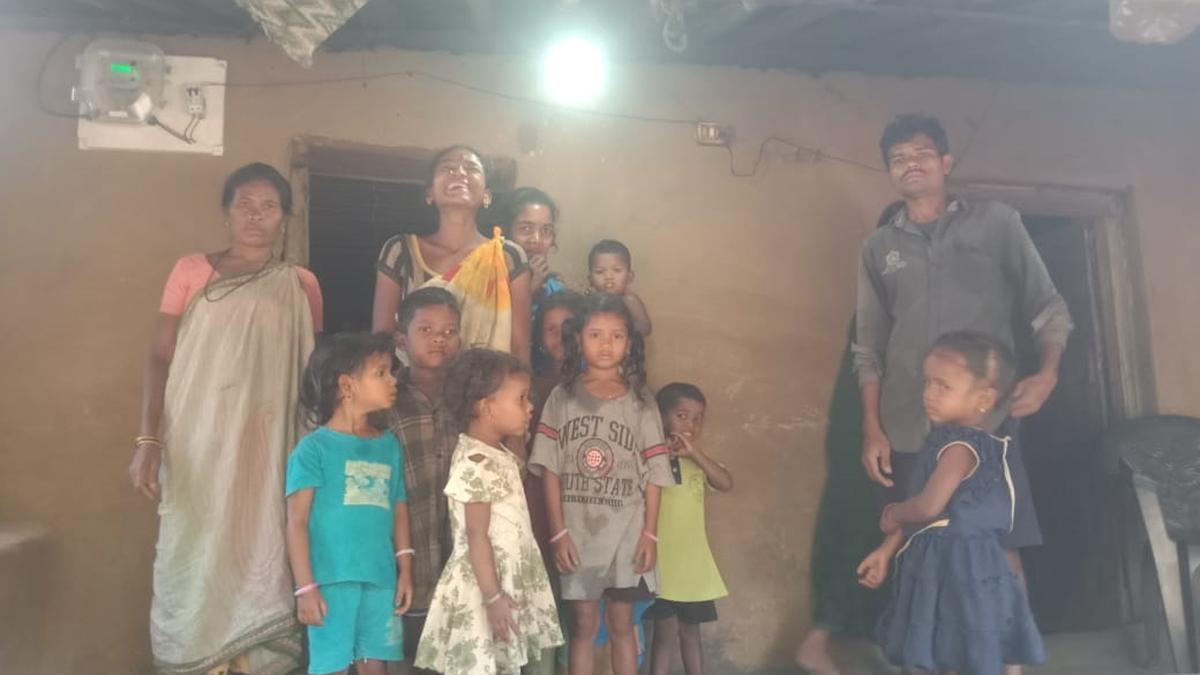
- 06 Feb 2025
In News:
In a significant development, tribal families from Neelabandha, a remote hilltop hamlet in Anakapalli district, Andhra Pradesh, received electricity for the first time since Independence. In celebration, they performed the Dhimsa dance, a vibrant expression of tribal culture.
About Dhimsa Dance:
- Origin & Region:
- Dhimsa is a traditional tribal dance predominantly performed in Andhra Pradesh, especially in the tribal belts of the Eastern Ghats.
- Its origin can be traced to the Koraput region (present-day Odisha and bordering Andhra Pradesh), primarily home to the Gond tribe.
- Communities Performing Dhimsa:
- Tribes such as Bagata, Valmiki, Poraja, Khond, Gadaba, Kondadora, Mukadora, and Kotia actively perform this dance.
- Occasions:
- Commonly performed during festivals, weddings, and the hunting festival in April.
- Celebratory, spiritual, and social in nature, symbolizing unity and joy.
- Dance Formation and Movements:
- Performed in circular formations with dancers holding each other's arms.
- Emphasis on synchronized hand and leg movements.
- Troupes usually consist of 20 or more dancers.
- Themes:
- Dhimsa is a narrative dance that expresses tribal mythologies, folktales, cultural mores, economic activities, kinship, and marital life.
- Musical Instruments Used:
- Dappu, Tudumu, Mori, Kidgi, Gilka, and Jodukommulu.
- A combination of percussion and wind instruments drives the rhythm and variation in the dance.
- Varieties:
- There are 12 known types of Dhimsa dances, each varying in pace, rhythm, and purpose.
Rural Electrification of Neelabandha Village:
- Background:
- Neelabandha is located in Arla Panchayat of Rolugunta Mandal in Anakapalli district.
- Consists of four households (approximately 20 individuals) who had been living without electricity since Independence.
- Implementation:
- The electrification was part of the Andhra Pradesh government’s rural development drive to provide basic infrastructure to underdeveloped tribal villages.
- Under the directions of District Collector Vijaya Krishnan, and CMD of APEPDCL, Prithvi Tej, the Eastern Power Distribution Company of Andhra Pradesh (EPDCL) carried out the electrification.
- Challenges Overcome:
- The hamlet lacked motorable roads, making it difficult to transport materials.
- Electricity poles had to be carried manually for over 6 km to reach the village.
- Outcome:
- Free electricity was provided to the villagers, marking a major milestone in tribal welfare.
- In a heartfelt celebration, the villagers performed Dhimsa under electric lights for the first time.
Issues Still Persisting:
- Infrastructure Deficits:
- The village still lacks road connectivity, educational access, and healthcare facilities.
- These gaps hinder children's ability to attend school and access essential services.
- Community Response:
- Local leaders, including CPI(M) district committee member K. Govind, welcomed the electrification but urged the government to address remaining developmental needs.
Makhana Board
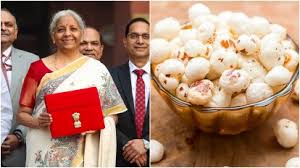
- 06 Feb 2025
In News:
In the Union Budget 2025–26, Finance Minister announced the establishment of a Makhana Board in Bihar with a dedicated budget of ?100 crore to boost the production, processing, and export of Makhana (Fox Nuts).
About Makhana (Fox Nuts):
- Botanical Name: Euryale ferox
- Family: Nymphaeaceae (Water lily family)
- Description:
- Makhana is the dried edible seed of the prickly water lily.
- Grown in freshwater bodies across South and East Asia.
- The plant is known for its violet and white flowers and large, round, prickly leaves.
- Due to its black outer covering, Makhana is nicknamed the "Black Diamond."
Nutritional and Medicinal Value:
- Low in fat, rich in carbohydrates, and a good source of protein and minerals.
- Widely used in:
- Traditional medicine
- Health and wellness products
- Culinary preparations such as popped Makhana (‘Lava’)
Major Producing Regions:
- India:
- Bihar produces 90% of India’s total Makhana, especially in the Mithilanchal region.
- Key districts: Darbhanga, Madhubani, Purnea, Katihar, Saharsa, Supaul, Araria, Kishanganj, Sitamarhi.
- The first four districts contribute 80% of Bihar’s Makhana output.
- Bihar produces 90% of India’s total Makhana, especially in the Mithilanchal region.
- Other Indian states: Assam, Manipur, West Bengal, Tripura, Odisha.
- Other countries: Nepal, Bangladesh, China, Japan, Korea.
- GI Tag: Mithila Makhana received the Geographical Indication (GI) tag in 2022.
Climatic Conditions for Cultivation:
- Type: Aquatic crop; grows in stagnant water bodies (ponds, lakes, wetlands).
- Ideal Conditions:
- Water Depth: 4–6 feet
- Temperature: 20°C – 35°C
- Relative Humidity: 50% – 90%
- Annual Rainfall: 100 – 250 cm
About the Makhana Board:
- Allocated Budget: ?100 crore
- Objectives:
- Train farmers in advanced cultivation techniques.
- Support processing and value addition in the Makhana supply chain.
- Facilitate financial aid and access to government schemes.
- Develop export infrastructure and promote branding and marketing.
Makhana under ODOP Scheme:
- Recognized as a One District One Product (ODOP) commodity for Bihar.
- Under ODOP, the Union Government provides subsidies to processors for:
- Infrastructure development
- Branding and marketing
About ODOP Scheme:
- Launched by: Ministry of Food Processing Industries (MoFPI)
- Objective: Promote district-level economic specialization and turn each district into an export hub.
- Origin: First launched in Uttar Pradesh (2018); adopted as a national initiative under the Atmanirbhar Bharat vision.
- Implementation:
- In coordination with the ‘Districts as Export Hubs’ (DEH) initiative.
- Managed by DGFT, Department of Commerce, and DPIIT.
- Significance:
- Encourages rural entrepreneurship, local employment, and global trade linkages.
- Strengthens district economies by scaling up traditional and unique products.
Gyan Bharatam Mission
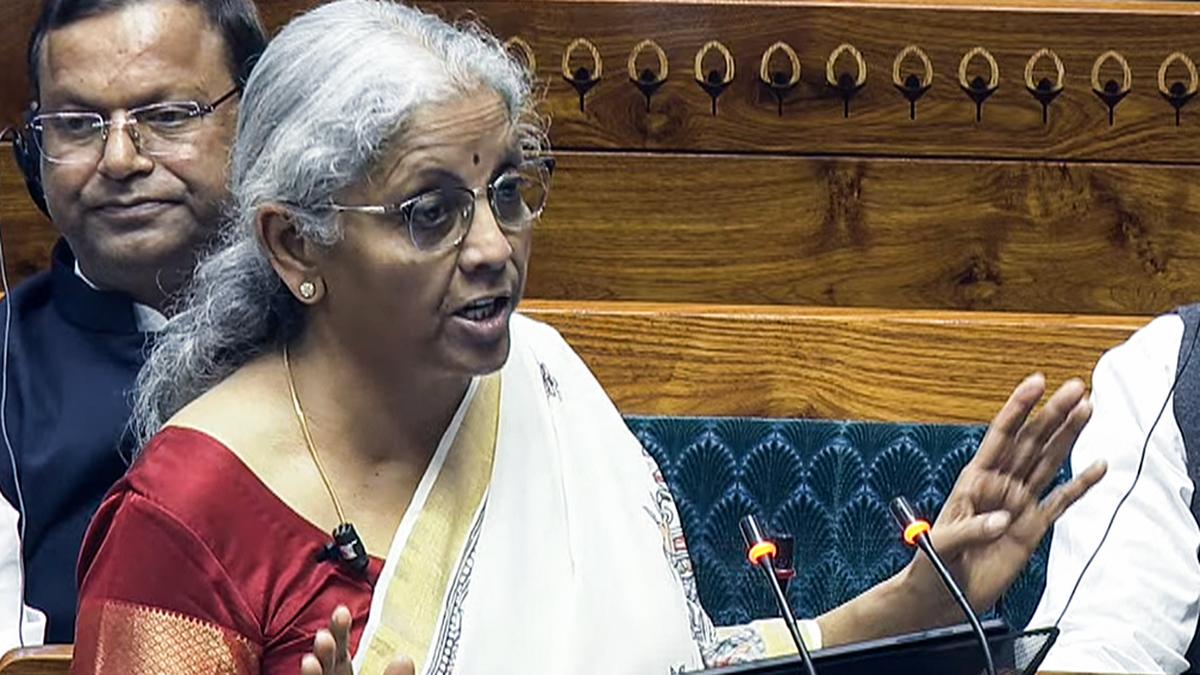
- 06 Feb 2025
In News:
The Union Budget 2025–26 announced the launch of the Gyan Bharatam Mission, a significant cultural initiative aimed at the survey, documentation, digitization, and conservation of over one crore manuscripts across India.
Key Details:
- A special national mission focusing on India’s manuscript heritage preserved in:
- Academic institutions
- Libraries
- Museums
- Private collections
- Objective:
To document and conserve more than one crore manuscripts, centralize them into a national digital repository, and make them accessible to researchers, students, and institutions globally. - Significance:
- Facilitates knowledge-sharing through digitization.
- Promotes India's traditional knowledge systems.
- Enhances academic and historical research in the Indian knowledge domain.
What is a Manuscript?
- A manuscript is a handwritten composition on materials such as:
- Palm leaf, paper, cloth, bark, or metal.
- Must be at least 75 years old and possess scientific, historical, or aesthetic value.
- Printed texts and lithographs are not considered manuscripts.
- Manuscripts may exist in hundreds of languages and scripts, e.g.:
- Sanskrit manuscripts written in Devanagari, Grantha, Oriya, and other scripts.
- Unlike epigraphs or official records (firmans, revenue documents), manuscripts hold knowledge content, not just historical data.
National Manuscripts Mission (NMM)
- Launched in 2003 under the Ministry of Culture, operated through the Indira Gandhi National Centre for the Arts (IGNCA).
- Mandate: Identify, preserve, and make accessible India's manuscript wealth.
- Revival: The 2025–26 Budget seeks to rejuvenate NMM to implement the Gyan Bharatam Mission effectively.
Budgetary Provisions
- NMM allocation increased from ?3.5 crore to ?60 crore for FY 2025–26.
- Culture Ministry overall allocation:
- ?3,360.96 crore, up from a revised estimate of ?3,260.93 crore.
- Other Key Allocations:
- Archaeological Survey of India (ASI): ?1,278.49 crore
- National Libraries and Archives: ?156.55 crore
- Museums (National Museum, NGMA): ?126.63 crore
- Note: Allocations for centenary events, cultural collaborations have been reduced.
Extra-Long Staple (ELS) Cotton

- 06 Feb 2025
In News:
In the Union Budget 2025–26, the Union Finance Minister announced a five-year Cotton Mission to boost productivity, sustainability, and promotion of Extra-Long Staple (ELS) cotton in India, aiming to reduce import dependency and strengthen the high-end textile sector.
What is Extra-Long Staple (ELS) Cotton?
- Definition: ELS cotton refers to cotton varieties with fibre lengths of 30 mm or more, renowned for their superior softness, strength, durability, and premium quality.
- Botanical Origin: Derived primarily from the species Gossypium barbadense, commonly known as Egyptian or Pima cotton.
Distinguishing Cotton Types by Fibre Length
Type Fibre Length Species Quality Uses Yield per Acre
Short Staple < 25 mm Gossypium hirsutum Coarser Low-cost textiles High
Medium Staple 25–28.6 mm Gossypium hirsutum Moderate Everyday fabrics 10–12 quintals
Extra-Long 30 mm & above Gossypium barbadense Superior Luxury textiles 7–8 quintals
Staple (ELS)
Special Characteristics of ELS Cotton
- Softer & Smoother: Ideal for premium, luxury clothing.
- Stronger & More Durable: Resistant to wear and tear.
- Resistant to Pilling: Maintains smoothness over time.
- Luxurious Finish: Produces fine yarns with a natural sheen.
- Minimal Finishing Required: Retains natural texture and quality.
Global and Indian Production Landscape
- Origin: Native to South America.
- Globally Grown In:
- Egypt, China, Australia, Peru – leading producers.
- In India:
- Cultivated in Atpadi Taluka (Sangli, Maharashtra), around Coimbatore (Tamil Nadu), and in parts of Karnataka and Madhya Pradesh.
- Grown mostly in rain-fed areas with warm climates and fertile soil, aiding fibre quality.
Challenges in ELS Cotton Cultivation in India
- Low Yield: ELS cotton yields 7–8 quintals/acre, significantly lower than medium staple varieties (10–12 quintals/acre).
- Market Linkage Deficit: Farmers struggle to fetch premium prices for ELS cotton due to weak market access and lack of dedicated procurement infrastructure.
- Technological Gaps: Limited access to improved seed varieties, agronomic practices, and technologies like HtBT (Herbicide-tolerant Bt) cotton.
- Import Dependency: India imports 20–25 lakh bales annually, accounting for ~90% of its ELS cotton requirements, to meet demand from the premium textile industry.
Significance of the Five-Year Cotton Mission
- Aimed at:
- Enhancing productivity and sustainability of ELS cotton.
- Reducing import dependence through indigenous development.
- Strengthening high-value textile exports by ensuring reliable ELS supply.
- Supports:
- Farmer income enhancement through value-added cultivation.
- Research and development in ELS cotton seed technology.
- Improved extension services, supply chain development, and market support mechanisms.
Kolleru Lake
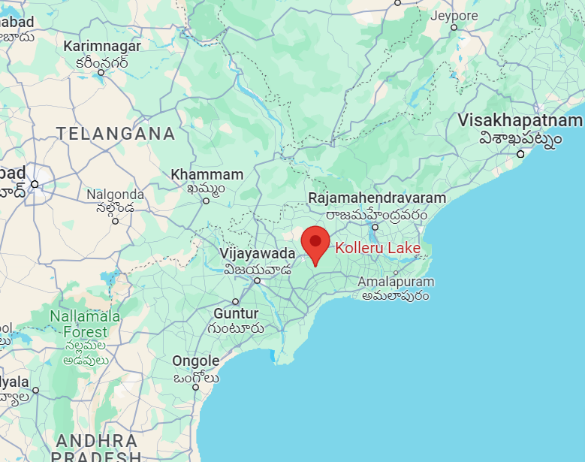
- 06 Feb 2025
In News:
The Southern Zonal Bench of the National Green Tribunal (NGT) has recently restrained the Andhra Pradesh government from proceeding with six proposed infrastructure projects in the Kolleru wetland area, citing violations of environmental protocols and lack of statutory clearances.
About Kolleru Lake
- Location: Northeastern Andhra Pradesh, between the Krishna and Godavari river deltas, near Eluru city.
- Type: One of Asia’s largest shallow freshwater lakes, covering an area of 308 sq. km.
- Hydrology:
- Fed by Budameru and Tammileru rivers.
- Drains into the Bay of Bengal via Upputeru river (a tidal water channel).
- Acts as a natural flood-balancing reservoir for the Krishna and Godavari river systems.
- Ecological Importance:
- Declared a Wildlife Sanctuary in 1999 and a Ramsar Site in 2002.
- Designated as an Important Bird Area (IBA) due to the presence of over 50,000 waterfowl annually.
- Lies on the Central Asian Flyway (CAF), a major migratory bird route.
- Key Avian Species:
- Grey Pelican (indicator species), Siberian Cranes, Glossy Ibis, Open-billed Stork, Purple Moorhen, Painted Storks.
Kolleru Bird Sanctuary
- A protected wetland marsh habitat within the Kolleru Lake region.
- Supports diverse aquatic flora and fauna, serving as a crucial ecosystem for migratory and resident bird species.
Infrastructure Projects and Legal Challenges
- The projects were proposed under the entity "A.P. Krishna – Kolleru Salinity Mitigation Projects Corporation Limited" with a total capital outlay of approximately ?2,952 crore.
- The plans included construction of three regulators-cum-roads across the Upputeru river and other barrages, regulators, and sluices, falling within the Coastal Regulation Zone (CRZ).
- The Andhra Pradesh Water Resources Department (WRD) issued G.O. Ms. No. 63 (dated 2nd December 2020) authorizing the project.
Grounds for NGT Intervention
- Key objections included:
- Absence of scientific or ecological studies.
- Lack of consultations with wetland experts, wildlife conservationists, and hydrologists.
- No clearances obtained from:
- Ministry of Environment, Forest and Climate Change (MoEF&CC)
- A.P. Coastal Zone Management Authority (CZMA)
- A.P. Pollution Control Board (PCB)
- National Board for Wildlife (NBWL)
NGT Observations and Ruling
- The tribunal emphasized the need for comprehensive evaluation of ecological and hydrological impacts before proceeding.
- It cited potential threats to the lake’s ecosystem, including:
- Disruption to natural hydrology.
- Loss of biodiversity and eco-sensitive habitats.
- The NGT ruled that the projects should not proceed unless fully compliant with environmental laws and backed by appropriate expert assessments.
- The ruling reinforced India's obligations under the Ramsar Convention and domestic environmental legislation, stressing the urgent need to protect the integrity of the Kolleru ecosystem.
Henipavirus
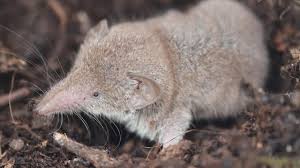
- 05 Feb 2025
In News:
A henipavirus, specifically the Camp Hill virus, has been detected in North America for the first time. This discovery in northern short-tailed shrews—a small mammal species found commonly in Canada and the U.S.—raises concerns over a potential zoonotic disease outbreak.
About Henipavirus
- Virus Type: Henipaviruses are zoonotic, negative-sense RNA viruses.
- Family: Paramyxoviridae.
- Natural Hosts: Pteropid fruit bats (commonly known as flying foxes).
- Other Hosts: Capable of infecting various mammals, including humans, horses, pigs, and shrews.
Notable Henipaviruses:
- Hendra virus (HeV):
- First identified in Australia.
- Mortality rate: Up to 70%.
- Nipah virus (NiV):
- Found in Southeast Asia, including Malaysia and Bangladesh.
- Case fatality rate ranges from 40% to 75%, depending on surveillance and clinical care.
Symptoms and Disease Progression
- Initial symptoms: Fever, dizziness, headache, and muscle pain (myalgias).
- Advanced symptoms: Respiratory issues, encephalitis (brain inflammation), confusion, abnormal reflexes, seizures, and coma.
- Relapsing encephalitis may occur months or years after apparent recovery.
- Fatality Risk: High, primarily due to encephalitis and multi-organ failure caused by damage to small blood vessels (microinfarction) in organs like the brain, liver, and kidney.
Why are Henipaviruses so dangerous?
- Henipaviruses produce proteins that:
- Suppress the innate immune system.
- Block interferon-stimulated antiviral responses, aiding viral replication.
- Act as virulence factors, allowing widespread infection and severe outcomes.
Modes of Transmission
- Animal-to-human:
- Direct contact with infected animals (e.g., fruit bats, pigs, horses, shrews).
- Consumption of contaminated food or water (e.g., raw date palm sap in Nipah outbreaks).
- Human-to-human: Via bodily fluids, close contact, or respiratory droplets during caregiving.
Treatment and Prevention
- Treatment:
- No specific vaccine or antiviral currently exists.
- Management is symptomatic and supportive (respiratory support, ICU care).
- Prevention:
- Vaccination of horses (in HeV-risk regions like Australia).
- Avoiding contact with fruit bats and sick animals.
- Isolating infected individuals and animals to prevent spread.
India-Maldives Joint Military Exercise ‘Ekuverin’
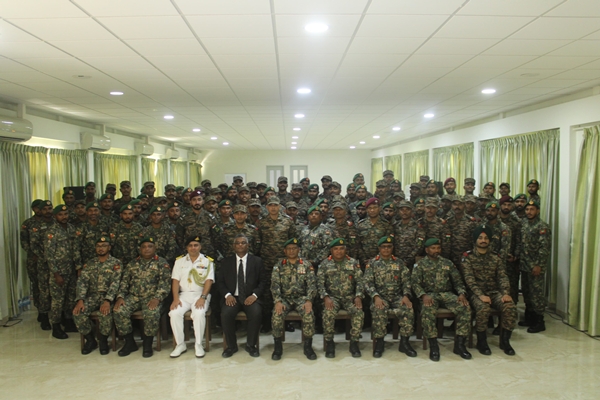
- 05 Feb 2025
In News:
The 13th edition of Exercise Ekuverin, a bilateral joint military exercise between the Indian Army and the Maldives National Defence Force (MNDF), commenced in the Maldives on February 4, 2025. The exercise continues to reinforce defence and strategic ties between the two nations.
About Exercise Ekuverin
- Name Meaning: “Ekuverin” means ‘Friends’ in Dhivehi, the official language of the Maldives—symbolizing the deep and friendly defence partnership between India and the Maldives.
- First Conducted: The exercise was initiated in 2009 as part of annual bilateral defence cooperation.
- Venue Alternation: It is held alternatively in India and the Maldives every year.
- 2023 Edition: Conducted at Chaubatia, Uttarakhand from June 11 to 24.
- 2025 Edition: Being hosted in the Maldives.
Key Objectives and Features
- Military Interoperability: Enhances coordination and operational synergy between Indian and Maldivian armed forces.
- Counter-Insurgency and Counter-Terrorism (CI/CT): Focuses on joint tactical drills to counter modern asymmetric threats.
- Humanitarian Assistance and Disaster Relief (HADR): Equips forces to respond effectively to natural disasters and humanitarian crises.
- Strengthening IOR Security: Reinforces regional maritime and strategic stability in the Indian Ocean Region (IOR), a key area of India’s strategic interest.
Significance for India-Maldives Relations
- Strategic Partnership: Builds mutual trust and defence preparedness, aligning with India’s “Neighbourhood First” policy.
- Capacity Building: Helps enhance the capability of the MNDF through joint training with a larger and more experienced Indian Army.
- Regional Security Cooperation: Plays a crucial role in maintaining peace, security, and freedom of navigation in the IOR.
India’s Defence Engagement with Southeast Asia
India actively conducts multiple bilateral and multilateral defence exercises with Southeast Asian countries to enhance defence diplomacy and promote a free, open, and secure Indo-Pacific.
Key Defence Exercises with Southeast Asian Nations:
- Garuda Shakti: Special Forces exercise with Indonesia (Nov 2022, Sangga Buana Training Area).
- Mitra Shakti: Annual exercise with Sri Lanka, last held in 2022.
- VINBAX: India-Vietnam bilateral exercise; 3rd edition held in 2022.
- IMBEX: India-Myanmar bilateral exercise (last noted in 2017–18).
- Maitree: Joint annual military exercise with Thailand, conducted since 2006.
- CORPAT: Coordinated Patrols with Indonesia, Thailand, and Malaysia for maritime domain awareness and security.
- AIME 2023: The first ASEAN-India Maritime Exercise, conducted in May 2023, involving navies from India and ASEAN nations (Brunei, Indonesia, Malaysia, Philippines, Singapore, Thailand, Vietnam).
Golden-headed Cisticola

- 05 Feb 2025
In News:
In a remarkable ornithological development, the Golden-headed Cisticola (Cisticola exilis) has been sighted in the Mathikettan Shola National Park, Idukki district, Kerala, marking its first recorded presence in the southern Western Ghats after a significant gap.
The finding underscores the ecological richness of the region and highlights the need for intensified avian research in the Western Ghats.
About Golden-headed Cisticola (Cisticola exilis)
- Also known as the bright-capped cisticola, it is a small warbler belonging to the family Cisticolidae.
- It is an omnivorous bird, feeding primarily on invertebrates such as insects and small slugs, along with grass seeds.
- The species is typically found in grassland habitats within mountain ranges, and has been previously recorded in parts of Karnataka, Tamil Nadu, and northern Kerala, notably in Banasura Hills, Wayanad. However, this is the first confirmed sighting in the southern part of the Palakkad Gap.
Physical features of breeding males include:
- Golden-orange plumage on the head, neck, and chest
- Pinkish beaks
- Black streaks on the back
- A distinctive call that aids identification
Habitat and Distribution
- It is widely distributed across Australia and several Asian countries.
- In India, its presence had been limited to select regions of the Western Ghats, making its recent sighting in Mathikettan Shola both rare and ecologically significant.
Conservation Status
- According to the IUCN Red List, the Golden-headed Cisticola is classified as Least Concern. Despite this, the new finding calls for further research into its habitat preferences and conservation needs within India.
About Mathikettan Shola National Park
Located in the southern part of the Palakkad Gap in the Western Ghats of Kerala, Mathikettan Shola is a vital biodiversity hotspot.
- It comprises evergreen forests, moist deciduous forests, shola grasslands, and semi-evergreen vegetation.
- The park hosts three major streams: Uchillkuthi Puzha, Mathikettan Puzha, and Njandar, which are tributaries of the Panniyar River.
- Its highest point is Kattumala, located at the eastern border adjoining Tamil Nadu.
- The Muthavan tribal community resides near the park’s northeastern boundary, reflecting the intricate human-nature interface in the region.
Scientific and Conservation Importance
The rediscovery has been documented in the journal Malabar Trogon by the Malabar Natural History Society, bringing attention to the importance of long-term monitoring and baseline studies in underexplored ecosystems.
It emphasizes:
- The ecological richness of the Western Ghats, a UNESCO World Heritage site.
- The importance of citizen science, as local birdwatchers played a key role in the finding.
- The need for enhanced habitat protection and ornithological research in grassland ecosystems of high-altitude regions.
RBI Digital Payments Index (DPI)
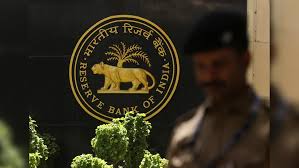
- 05 Feb 2025
In News:
The Reserve Bank of India’s (RBI) Digital Payments Index (DPI) rose to 465.33 as of September 2024, up from 445.5 in March 2024, indicating a sustained increase in the adoption and penetration of digital payments across India.
About the RBI-DPI
- Launched: January 2021
- Constructed by: Reserve Bank of India
- Purpose: To measure the extent and progress of digitisation of payments in India.
- Base Period: March 2018 (DPI Score = 100)
- Frequency of Publication: Semi-annually (March and September)
Significance of the Index
- Acts as a quantitative tool to monitor India’s progress in achieving a less-cash economy.
- Provides stakeholders, policymakers, and researchers a composite view of digital payment trends.
- Helps identify policy focus areas and gaps in digital infrastructure and adoption.
- Supports the goals of financial inclusion, innovation, and digital public infrastructure.
Recent Trends
- September 2024 DPI Score: 465.33
- March 2024 DPI Score: 445.5
- Implication: Demonstrates continued momentum in digital payment adoption, driven by improved payment infrastructure and payment performance nationwide.
Structure of the RBI-DPI
The index is composed of five broad parameters, each with defined weightages and sub-indicators:
Parameter Weightage Description
1. Payment Enablers 25% Internet/mobile penetration, bank account ownership, Aadhaar usage.
2. Payment Infrastructure – Demand Side 10% Number of debit/credit cards, user demand for digital options.
3. Payment Infrastructure – Supply Side 15% Availability of POS machines, ATMs, bank branches, QR codes.
4. Payment Performance 45% Actual volume and value of digital transactions, currency usage trends.
5. Consumer Centricity 5% Digital payment awareness, fraud prevention, grievance redressal.
Each parameter is further broken down into measurable sub-indicators, offering a comprehensive framework for assessment.
Why RBI-DPI Matters for India
- Digital Transformation: Encourages the shift from cash to digital payments, aligning with the goals of Digital India.
- Policy Impact Assessment: Evaluates the effectiveness of regulatory and policy interventions in the payment ecosystem.
- Infrastructure Development: Reflects the outreach of digital payment infrastructure, aiding targeted investments.
- Financial Inclusion: Helps assess how digital modes are reaching the underserved and unbanked populations.
- Data-Driven Governance: Facilitates evidence-based decision-making in financial sector reforms.
SwaRail SuperApp
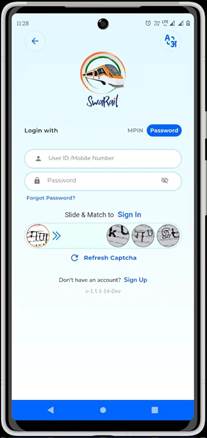
- 05 Feb 2025
In News:
The Ministry of Railways has launched a unified mobile application, SwaRail, currently in beta testing as of January 31, 2025.
This initiative aims to streamline access to Indian Railways services and enhance user experience by consolidating various apps into a single digital platform.
Key Highlights
What is SwaRail?
- SwaRail is a SuperApp developed by the Centre for Railway Information Systems (CRIS).
- It serves as a comprehensive, one-stop solution for a wide range of Indian Railways services.
- The app is currently in beta testing and is available on the Google Play Store and Apple App Store.
Objective
- To integrate multiple railway-related services under a unified platform.
- To reduce app clutter and device storage consumption.
- To improve user experience through a seamless and intuitive interface.
Developed By: Centre for Railway Information Systems (CRIS)
- CRIS is an organization under the Ministry of Railways.
- It combines IT expertise with railway operational experience.
- CRIS is responsible for developing and maintaining software for core railway functions.
Services Offered via SwaRail
The SuperApp merges functionalities of multiple existing apps, offering:
- Ticketing Services
- Reserved ticket booking
- Unreserved and platform ticket booking
- Freight & Parcel Enquiries
- Parcel booking status
- Freight services information
- Passenger Enquiries
- Real-time train status
- PNR enquiry (along with associated train details)
- Train schedules
- Onboard Services
- Food ordering while traveling
- Complaint redressal via Rail Madad
Notable Features of the SuperApp
Feature Description
Single Sign-On Access all services using a single set of credentials
Unified App Combines multiple previously separate apps (e.g., IRCTC RailConnect, UTS)
Integrated Interface Displays consolidated data like PNR + train info on the same screen
Easy Onboarding Existing users can log in with RailConnect/UTS credentials
Multiple Login Modes Supports m-PIN, biometric authentication, and OTP-based guest login
Smart Wallet Integration Auto-linking of R-Wallets from UTS App for ticket booking transactions
User-Centric Approach
- The app is being actively tested, and users are encouraged to provide feedback during the beta phase.
- CRIS is monitoring performance and issues for improvement before the final public release.
- The government envisions technological integration to ensure efficient, smarter, and citizen-friendly rail services.
GARBH-INi-DRISHTI

- 04 Feb 2025
In News:
India has made a significant stride in biomedical research and public health with three major developments led by the Translational Health Science and Technology Institute (THSTI) in Faridabad, Haryana.
Key Highlights:
India’s First Ferret Research Facility
- Inaugurated by: Department of Biotechnology (DBT), Ministry of Science & Technology.
- Location: NCR Biotech Science Cluster, Faridabad.
- Purpose: To bolster India's capacity in:
- Vaccine development
- Therapeutic testing
- Research on emerging infectious diseases like influenza, COVID-19, and tuberculosis.
- Significance:
- Strengthens India’s pandemic preparedness.
- Positions India among the select nations with advanced biosafety labs using ferrets—ideal models due to respiratory systems similar to humans.
Launch of GARBH-INi-DRISHTI Data Repository
- Platform: DBT Data Repository and Information Sharing Hub under the GARBH-INi program.
- Dataset Size: Over 12,000 pregnant women, newborns, and postpartum mothers.
- Developed by: THSTI with collaboration from top Indian research institutions and hospitals.
- Features:
- Comprehensive clinical data, medical images, and biospecimens.
- Secure, controlled access promoting ethical research.
- Facilitates predictive tools for preterm birth and maternal health complications.
- Utility:
- Empowers both national and global researchers.
- Informs maternal and neonatal health interventions.
- Supports evidence-based policymaking in public health.
- Program Genesis:
- GARBH-INi (2014): Interdisciplinary initiative to understand preterm birth risks—biological and non-biological.
- Part of: Atal Jai Anusandhan Biotech Mission under the UNaTI initiative.
Technology Transfer Agreement with Industry
- Agreement Between: THSTI and Sundyota Numandis Probioceuticals Pvt. Ltd.
- Technology Transferred:
- Lactobacillus crispatus, a genetically defined synthetic microbial consortium.
- Isolated from reproductive tracts of Indian women enrolled in GARBH-INi.
- Applications:
- Nutraceuticals and probiotics for reproductive health.
- Potential treatments for vaginal infections and urinary tract infections (UTIs).
- Significance:
- Promotes microbiome-based interventions.
- Bridges lab-to-market gap, boosting the biomanufacturing ecosystem.
Strategic Implications for India
- Scientific Diplomacy & Global Standing: With cutting-edge facilities and open data-sharing platforms, India emerges as a key player in global biomedical research.
- Public Health Impact: Supports targeted, data-driven maternal health policies and pandemic response frameworks.
- Innovation Ecosystem: Reflects the convergence of academic research, industry collaboration, and translational science.
World Wetlands Day 2025
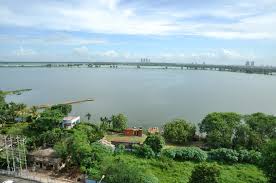
- 04 Feb 2025
In News:
World Wetlands Day is observed every year on 2nd February to commemorate the adoption of the Ramsar Convention on Wetlands in 1971 in Ramsar, Iran.
India has been a signatory to the Convention since 1982 and has actively worked towards the conservation and sustainable management of wetlands—critical ecosystems that serve as biodiversity hotspots, natural flood buffers, and carbon sinks.
Theme 2025: "Protecting Wetlands for Our Common Future"
The 2025 theme emphasizes collaborative efforts to protect wetlands to ensure ecological sustainability, biodiversity preservation, and long-term human well-being. It highlights the need for integrated management and foresight in conservation strategies.
Key Event: Parvati Arga Ramsar Site, Gonda, Uttar Pradesh
The Union Ministry of Environment, Forest and Climate Change (MoEFCC) organized the national-level celebrations of World Wetlands Day 2025 at the Parvati Arga Ramsar Site in Gonda district, Uttar Pradesh.
Significance of the Site
- Comprises two rain-fed oxbow lakes—Parvati and Arga—located in the terai region of the Gangetic plains.
- Supports endangered and critically endangered species like the white-rumped vulture, Indian vulture, and Egyptian vulture.
- Attracts migratory birds such as Eurasian coots, greylag geese, northern pintails, and red-crested pochards.
- Threatened by invasive species, notably the common water hyacinth.
- The nearby Tikri Forest is being developed as an eco-tourism site, and a nature-culture tourism corridor is planned between Ayodhya and Devi Patan.
Cultural and Economic Value
- The area includes heritage sites such as the birthplaces of Maharishi Patanjali and Goswami Tulsidas, enhancing its potential as a religious and cultural tourism hub.
- A MoU between Amazon and ARGA (UP Government initiative) aims to empower women entrepreneurs through digital training and market access under Amazon’s Saheli programme.
India's Wetland Landscape and New Ramsar Sites (2025 Update)
India’s tally of Ramsar Sites has risen to 89, with four new additions:
- Udhwa Lake – Jharkhand (first Ramsar site for the state)
- Theerthangal – Tamil Nadu
- Sakkarakottai – Tamil Nadu
- Khecheopalri – Sikkim (first Ramsar site for the state)
- Tamil Nadu leads with 20 Ramsar Sites, followed by Uttar Pradesh with 10 sites.
- Total area under Ramsar protection in India is now approximately 1.358 million hectares.
Amrit Dharohar Initiative
Launched in June 2023, the Amrit Dharohar initiative promotes conservation and sustainable use of Ramsar Sites over three years. It aligns with Budget 2023–24 announcements and focuses on:
- Species and Habitat Conservation
- Nature Tourism
- Wetlands-based Livelihoods
- Wetlands and Carbon Mitigation
The initiative encourages convergence among central ministries, state authorities, and community stakeholders.
Workshops and Public Engagement
A regional workshop for Northern States was organized on 1st February 2025, with participants from nine states and UTs, highlighting collaborative models in wetland management. The main event also included:
- Exhibitions on eco-friendly products, wetland conservation, and green skills.
- Launch of publications like the Integrated Management Plan for Parvati Arga, Factbook of India’s 85 Ramsar Sites, and Development of Van Taungya Villages.
- Felicitation of painting, quiz, and Nukkad Natak competition winners, promoting grassroots awareness.
Significance of Wetlands in India
Wetlands are water-covered ecosystems, either permanently or seasonally flooded. They:
- Support rich biodiversity, including migratory birds and aquatic species.
- Recharge groundwater and regulate floods.
- Provide livelihoods through fisheries and tourism.
- Act as natural carbon sinks, aiding in climate change mitigation.
Major Threats
- Pollution from industrial and domestic effluents
- Encroachment and urbanization
- Invasive species
PM Shram Yogi Maandhan Yojana (PM-SYM)
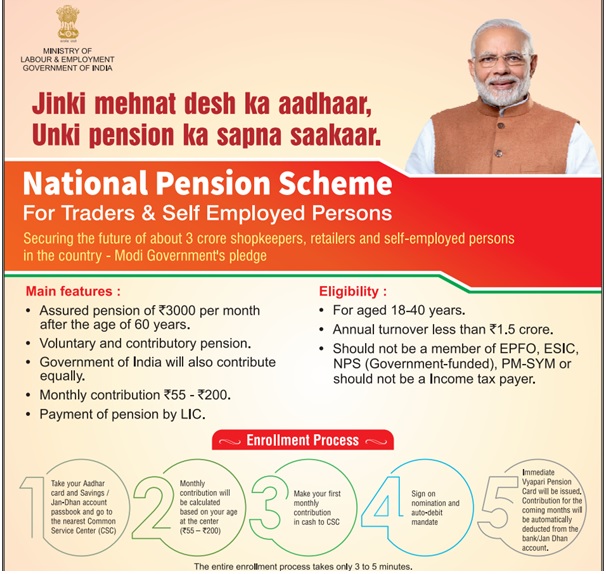
- 04 Feb 2025
In News:
The Union Budget 2025–26 has accorded the highest-ever allocation of ?32,646 crore to the Ministry of Labour and Employment, representing an 80% increase over the previous year's Revised Estimates.
The enhanced funding reflects the government's strategic focus on employment generation and strengthening social security mechanisms for unorganised workers and gig economy participants.
Key Budgetary Highlights:
1. Employment Generation Scheme:
- ?20,000 crore has been allocated to the new Employment Generation Scheme, double the previous year’s allocation.
- The scheme is aimed at fostering large-scale employment opportunities and skilling across various sectors.
2. Employees’ Pension Scheme:
- Allocation increased by ?300 crore, strengthening retirement security for formal sector workers.
3. PM Shram Yogi Maandhan Yojana (PM-SYM):
- Allocation increased by 37% compared to last year.
- The scheme provides old-age social security to unorganised workers through a voluntary, contributory pension model.
About Pradhan Mantri Shram Yogi Maandhan Yojana (PM-SYM)
Objective:
To provide minimum assured pension and social security to unorganised sector workers, including street vendors, construction workers, agriculture laborers, domestic workers, etc.
Eligibility:
- Indian citizen aged 18–40 years
- Monthly income below ?15,000
- Not a member of EPFO, ESIC, or NPS
Key Features:
- Minimum Assured Pension: ?3,000 per month after 60 years of age.
- Voluntary and Contributory Scheme:
- Contributions made via auto-debit from bank accounts.
- 50:50 matching contribution by the Central Government.
- Pension Fund Management:
- Administered by the Ministry of Labour and Employment.
- Implemented by LIC and CSC e-Governance Services India Ltd.
- LIC acts as the Pension Fund Manager.
Family Pension Provision:
- In case of subscriber's death:
- Spouse receives 50% of the pension amount as family pension.
- If death occurs before 60 years, the spouse may continue contributions or exit the scheme as per norms.
Exit Provisions:
- Exit before 10 years: Subscriber's share with accrued interest is returned.
- Exit after 10 years but before 60 years: Entire contribution with interest returned to the subscriber.
Social Security for Gig Workers
Recognising the gig economy as a critical pillar of India’s modern workforce, the government has taken key steps to enhance their social security:
- e-Shram registration
- Provision of unique identity cards
- Access to healthcare benefits under PM Jan Arogya Yojana
- Expected to benefit around 1 crore gig workers
Iran’s Missile Advancements
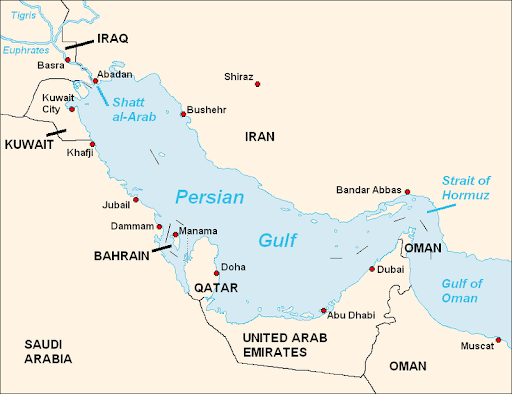
- 04 Feb 2025
In News:
In a significant military development, Iran has successfully test-fired the Ghadr-380, an advanced anti-warship cruise missile with a range of 1,000 kilometers (600 miles).
This capability allows it to target U.S. Navy warships deployed in critical maritime regions like the Persian Gulf and the Sea of Oman. The missile test was launched from an underground missile facility and was broadcast on Iranian state television, underscoring its strategic messaging.
Key Missiles Unveiled by Iran:
1. Ghadr-380 Cruise Missile:
- Type: Anti-warship cruise missile
- Range: Over 1,000 km
- Features:
- Anti-jamming capability
- Quick-launch readiness (operable by one person in less than 5 minutes)
- Launch Details:
- Fired from an underground missile base in central Iran
- Targeted the Sea of Oman
- Specific test timing and warhead specifications were not disclosed
2. Etemad Ballistic Missile:
- Name Meaning: Etemad means "trust" in Persian
- Type: Precision-guided ballistic missile
- Range: 1,700 km (1,056 miles)
- Specifications:
- Length: 16 meters
- Diameter: 1.25 meters
- Equipped with precision-guided warhead
- Built by: Iranian Ministry of Defence
Ballistic vs. Cruise Missiles: Understanding the Distinction
Feature Ballistic Missile Cruise Missile
Propulsion Rocket-propelled at launch; unpowered descent Jet engine-powered throughout flight
Flight Path Arched trajectory (leaves and re-enters atmosphere) Straight, low-altitude flight within atmosphere
Detection Easier to track via radar once launched Difficult to detect due to low-altitude flight
Launch Platforms Ground-based, silo, mobile launchers Ground, air, or sea platforms
Warhead Capability Can carry conventional or nuclear warheads Usually conventional, but may carry nuclear in advanced forms
Iran’s Strategic Missile Doctrine
Underground Missile Facilities:
- Iran maintains extensive underground missile bases, especially in southern Iran near the Strait of Hormuz—a chokepoint for global oil trade.
- Such facilities enhance survivability and rapid response capabilities.
Missile Development Drivers:
- Iran's missile program evolved as a strategic deterrent post the Iran-Iraq War (1980–1988), where both countries used missiles to target civilian areas.
- UN arms embargoes led Iran to focus on domestic development of missile systems, including both cruise and ballistic types.
Capabilities:
- Iran now claims to possess missiles with ranges up to 2,000 kilometers, capable of reaching parts of the Middle East, including Israel.
- The Ghadr-380 and Etemad missiles are examples of technological diversification—from ballistic to precision cruise systems.
Implications for Regional and Global Security
- Deterrence Posture: Iran’s missile advancements strengthen its deterrence, especially amid strained relations with the U.S. and its allies.
- Threat to Maritime Security: The Ghadr-380, with its anti-warship focus, poses a direct threat to U.S. naval assets in the Persian Gulf and adjacent waters.
- Escalation Risks: Enhanced missile capabilities could escalate regional tensions, particularly in flashpoints like the Strait of Hormuz.
- Western Concerns: The U.S. and European nations remain wary of Iran’s dual-track approach involving missile and nuclear program developments.
Shubhanshu Shukla
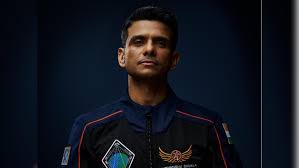
- 04 Feb 2025
In News:
Group Captain Shubhanshu Shukla of the Indian Air Force (IAF) is set to become the first Indian astronaut to travel to the International Space Station (ISS) on a private mission, marking a significant milestone in India’s space diplomacy and international collaboration in human spaceflight.
Mission Details:
- Mission Name: Axiom Mission 4 (Ax-4)
- Launch Vehicle: SpaceX’s Dragon spacecraft
- Launch Site: Kennedy Space Center, Florida, USA
- Tentative Timeline: Spring 2025
- Duration on ISS: Up to 14 days
- Mission Objectives: Conduct scientific experiments, educational outreach, and commercial activities, in collaboration with NASA and ISRO.
International Collaboration:
- The mission includes astronauts from India, Poland, and Hungary—the first such trilateral collaboration in over four decades.
- Marks the return of human spaceflight for Poland and Hungary after a hiatus of more than 40 years.
- Demonstrates Axiom Space’s emerging role in redefining access to low-Earth orbit and supporting national space programs through private missions.
About Shubhanshu Shukla:
- Born: October 10, 1985, in Lucknow, Uttar Pradesh
- Commissioned into IAF: June 2006, Fighter Wing
- Promoted to Group Captain: March 2024
- Current Role: Astronaut-designate for India’s Gaganyaan human spaceflight mission
- Flight Experience: Over 2,000 hours across multiple aircraft including Su-30 MKI, MiG-21, MiG-29, Jaguar, Hawk, Dornier, and An-32
- Astronaut Training: Trained at Yuri Gagarin Cosmonaut Training Center, Star City, Moscow (1-year program)
Historical Context:
- Rakesh Sharma remains the first Indian to travel to space (1984) aboard Soviet Soyuz T-11, under the Interkosmos program.
- Shukla’s upcoming mission marks a new era of Indian participation in international human space missions, particularly through private partnerships.
National Geospatial Mission
- 03 Feb 2025
In News:
Finance Minister Nirmala Sitharaman announced the launch of a National Geospatial Mission in the Budget 2025-26.
Key Highlights:
Objective: To modernize land records, enhance urban planning, and create a robust geospatial infrastructure to support India’s broader development goals, including sustainable growth, efficient governance, and improved public service delivery.
Key Features of the Mission:
- Modernization of Land Records:
- Digitization and updation of land records using geospatial technology.
- Aim to reduce land disputes and promote efficient and transparent land use.
- Urban and Infrastructure Planning:
- Provides high-resolution geospatial data for informed urban planning.
- Supports better design and execution of infrastructure through integration with the PM Gati Shakti framework.
- Development of National Geospatial Data Infrastructure (NGDI):
- Integrates geospatial data from multiple departments and ministries.
- Enables seamless access and interoperability for users across sectors.
- Open Geospatial Data Policy:
- Encourages private sector participation by allowing access to non-sensitive, high-resolution data.
- Reduces reliance on foreign geospatial data providers.
- Sectoral Impact:
- Agriculture: Precision farming, resource mapping, and yield optimization.
- Disaster Management: Enhances early warning systems and response planning.
- Environmental Monitoring: Facilitates conservation, deforestation tracking, and ecosystem health analysis.
- Transportation: Improves logistics, routing, and infrastructure placement.
- Climate Monitoring: Aids in data-driven climate action and adaptation planning.
- Technological Integration:
- Utilizes emerging technologies such as AI, drones, and quantum computing for spatial data collection and analysis.
- Promotes research and development in geospatial science to drive innovation.
- Support to Private Sector:
- Anticipated growth in demand for services from geospatial startups, drone companies, and mapping enterprises.
- Strengthens India’s indigenous geospatial capability aligned with the booming global geospatial market (projected to reach $1,064 million by 2030).
Significance and Alignment with National Goals:
- Enhances transparency and efficiency in land governance.
- Contributes to sustainable urban development.
- Aligns with Digital India and Atmanirbhar Bharat by reducing data dependency on foreign sources.
- Acts as a foundational enabler for India’s development agenda, particularly in areas of resource management, climate resilience, and national security.
PM Dhan Dhanya Krishi Yojana
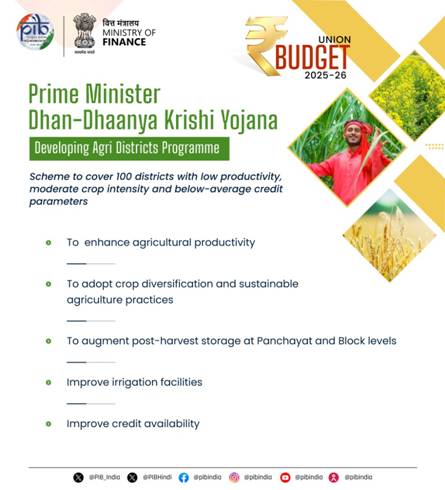
- 03 Feb 2025
In News:
- Recently, the Union Government has introduced the PM Dhan Dhanya Krishi Yojana which aims at enhancing agricultural productivity.
- Objective: To boost agricultural productivity, modernize farming practices, and enhance rural prosperity by addressing region-specific challenges in backward agricultural districts.
Key Features:
- Integrated Approach:
- Consolidates multiple existing agricultural schemes under one umbrella for greater synergy and implementation efficiency.
- Draws inspiration from the Aspirational Districts Programme, which has improved socio-economic outcomes in backward regions.
- District-Specific Interventions:
- Focuses on districts with:
- Low crop productivity
- Moderate crop intensity
- Limited institutional credit access
- Implements customized strategies based on the unique challenges of each region.
- Focuses on districts with:
- Core Focus Areas:
- Enhancing farm productivity through modern technology.
- Improving irrigation infrastructure.
- Increasing formal credit availability to reduce dependence on informal moneylenders.
- Promoting crop diversification and sustainable agriculture.
- Strengthening post-harvest infrastructure like storage at Panchayat and block levels.
- Technology-Driven Solutions:
- Encourages adoption of climate-resilient and precision farming.
- Supports digital access to credit and advisory services.
- Financial Inclusion:
- Strengthens linkages with government financial programs, microfinance institutions, and banks.
- Aims to reduce rural indebtedness and promote formal financial participation.
- State and Centre Collaboration: Implementation will involve both central and state governments, ensuring localized solutions with national support.
- Reducing Distress Migration: By improving rural livelihoods and opportunities, the scheme aims to make migration a choice rather than a compulsion.
Onchocerciasis
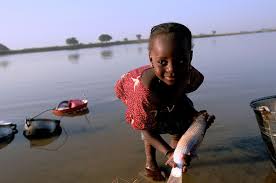
- 03 Feb 2025
In News:
The World Health Organization (WHO) officially verified Niger as the first country in the African Region and the fifth globally to eliminate onchocerciasis (river blindness) by interrupting the transmission of the parasite Onchocerca volvulus.
What is Onchocerciasis (River Blindness)?
- A parasitic disease caused by the worm Onchocerca volvulus.
- Transmitted by infective blackflies, primarily found in riverine areas.
- Causes severe itching, disfiguring skin conditions, and irreversible blindness.
- It is the second leading infectious cause of blindness globally (after trachoma).
- Predominantly affects rural populations in sub-Saharan Africa, Yemen, and parts of Latin America.
Niger’s Elimination Strategy and Achievements:
Historical Background:
- 1976–1989: Under the WHO Onchocerciasis Control Programme (OCP), Niger used vector control via insecticide spraying, reducing disease transmission.
- 2008–2019: Mass Drug Administration (MDA) with ivermectin and albendazole was carried out, primarily for lymphatic filariasis (LF), but also effectively interrupted onchocerciasis transmission in co-endemic areas.
Assessment and Surveillance:
- 2014: Niger began preliminary assessments following the end of LF MDA.
- Entomological and epidemiological surveys confirmed disease elimination:
- Prevalence dropped from 60% to 0.02%.
- No ongoing transmission of O. volvulus.
Key Contributors to Success:
- Partnerships: Collaborative efforts between the Government of Niger, WHO, Merck Sharpe & Dohme (MSD), and various NGOs.
- Medicine Donation: MSD’s donation of ivermectin.
- Surveillance & Flexibility: Continuous monitoring allowed strategic adaptation.
- Previous Success: Niger was certified free of Guinea-worm disease in 2013.
Global and Regional Significance:
- Niger becomes the fifth country globally to eliminate onchocerciasis:
- Other four countries:
- Colombia (2013)
- Ecuador (2014)
- Mexico (2015)
- Guatemala (2016) (All from the WHO Region of the Americas)
- Other four countries:
- WHO African Region:
- 21 countries have eliminated at least one Neglected Tropical Disease (NTD).
- Onchocerciasis is the second NTD eliminated in Niger after Guinea-worm.
Guneri Inland Mangrove

- 03 Feb 2025
In News:
In 2024, the Gujarat government declared the Inland Mangrove of Guneri, located in Kutch district, as the first Biodiversity Heritage Site (BHS) of the state under the Biological Diversity Act, 2002. The declaration followed a recommendation by the Gujarat Biodiversity Board.
Key Features of Guneri Inland Mangroves:
- Location: Guneri village, Lakhtar tehsil, Kutch district, Gujarat.
- Area: 32.78 hectares.
- Distance from Sea: ~45 km from the Arabian Sea; ~4 km from Kori Creek.
- Nature: Inland (non-coastal) mangrove ecosystem — one of only eight such sites globally and the last remaining in India.
- Terrain: Flat land resembling a forest; no tidal influence or sludge typically seen in coastal mangroves.
- Water Source: Sustained by groundwater retained in limestone deposits; no direct contact with seawater.
Ecological and Geological Significance:
- Possibly originated from:
- Miocene marine transgression, or
- Along the ancient Saraswati River, believed to have flowed in the Great Rann of Kutch around 3000–4000 BCE.
- Limestone formations in western Kutch provide continuous subsurface water flow, enabling survival of this unique mangrove system.
Biodiversity:
- Habitat to:
- 20 migratory bird species
- 25 resident migratory avifaunal species
- Acts as a vital ecosystem for local and seasonal wildlife.
Mangroves in India – 2024 Snapshot:
- As per the “Red List of Mangrove Ecosystems” (May 22, 2024):
- India has 3% of South Asia’s mangrove cover.
- Total mangrove area: 4,975 sq km (0.15% of India's land area).
- Increase: 54 sq km (1.10%) since last assessment.
- State-wise share:
- West Bengal: 42.45% (notably South 24 Parganas & Sundarbans)
- Gujarat: 23.66% (with highest increase: 37 sq km)
- Andaman & Nicobar Islands: 12.39%
Legal Framework:
- Declared under the Biological Diversity Act, 2002, which empowers state governments to notify BHS after consulting local self-government bodies.
- A local Biodiversity Management Committee (BMC), including representatives from self-governance institutions, will oversee protection and conservation.
- This provides a formal structure for site management, previously absent.
Conservation Measures:
- Training programs for local and tribal communities along with forest officials.
- A management plan will be implemented to preserve the unique flora and fauna.
National Bank for Financing Infrastructure and Development (NaBFID)
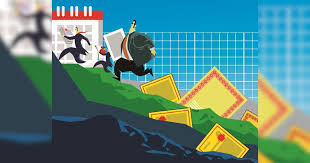
- 03 Feb 2025
In News:
In the Union Budget 2025, Finance Minister Nirmala Sitharaman announced that the National Bank for Financing Infrastructure and Development (NaBFID) will set up a partial credit enhancement facility to promote corporate bond issuance in the infrastructure sector.
Need for Credit Enhancement:
- Pension and insurance funds in India, as per regulatory norms, can invest only in AA-rated or higher securities.
- Most infrastructure firms issue bonds rated below this threshold (often "A" rated).
- Partial credit enhancement will elevate such bonds to AA ratings, enabling large-scale participation from long-term institutional investors.
Significance:
- Currently, pension and insurance funds prefer government bonds. However, with the government's ongoing fiscal consolidation, sovereign bond issuance is expected to decline.
- This measure provides alternative, long-term investment avenues for these funds.
- Enhances liquidity in the corporate bond market, especially for infrastructure players.
- Helps in reducing infrastructure companies' dependence on banks for funding.
About NaBFID:
- Established: 2021 under The National Bank for Financing Infrastructure and Development Act, 2021.
- Type: Development Finance Institution (DFI).
- Regulator: Reserve Bank of India (RBI) as an All-India Financial Institution (AIFI).
- Purpose: Bridge gaps in long-term, non-recourse infrastructure financing and promote bond and derivatives markets in India.
Development Finance Institutions (DFIs):
- Government-owned or public sector-backed institutions that finance large-scale, long-gestation projects.
- Provide medium (1–5 years) and long-term (>5 years) financing.
- Raise funds via sovereign borrowings, insurance companies, pension funds, and sovereign wealth funds.
- Offer both financial support (loans, guarantees) and technical support (project viability, consultancy).
- Do not accept public deposits.
Benefits of Partial Credit Enhancement:
- Democratizes access to the corporate bond market for sub-AA-rated firms.
- Attracts long-term capital into infrastructure through safer, credit-enhanced instruments.
- Promotes diversification and deepening of India's debt markets.
- Makes infrastructure financing more cost-efficient and sustainable over the long term.
Challenges Ahead:
- Regulatory streamlining is essential.
- Guarantee fees need optimization to ensure cost competitiveness against traditional bank lending.
National Manufacturing Mission
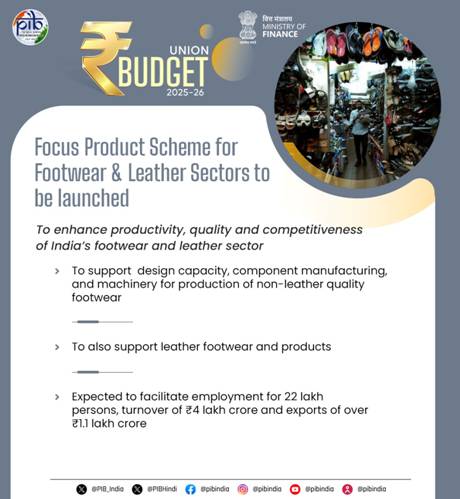
- 02 Feb 2025
In News:
- The National Manufacturing Mission (NMM) has been launched to accelerate India’s transition into a global manufacturing hub.
- This mission is a key component of the Make in India initiative and aims to raise the manufacturing sector’s contribution to GDP from 17% to 25% by 2025.
Scope & Coverage
- Targets small, medium, and large industries across sectors.
- Provides a comprehensive support framework involving policy guidance, execution roadmaps, and governance structures for central ministries and state governments.
Five Core Focus Areas:
- Ease and cost of doing business
- Skilling for future-ready jobs
- Support for a dynamic MSME sector
- Technology availability and innovation
- Enhancement of product quality
Clean Tech Manufacturing Focus
In line with India's sustainable development goals, the mission will promote domestic value addition and build robust manufacturing ecosystems for:
- Solar PV cells
- Electric vehicle (EV) batteries
- Motors and controllers
- Electrolyzers
- Wind turbines
- Very high-voltage transmission equipment
- Grid-scale batteries
Strategic Objective: Reduce reliance on Chinese imports and integrate India into global clean tech supply chains.
MSME Sector Support
- Credit Guarantee Cover for MSMEs increased from ?5 crore to ?10 crore.
- Revised Classification Criteria: Investment and turnover limits enhanced by 2.5x and 2x, respectively.
- Aims to empower MSMEs with greater access to credit and growth incentives.
Sector-Specific Measures
1. Footwear & Leather Sector
- A new Focus Product Scheme will support:
- Design capacity
- Component manufacturing
- Machinery for non-leather and leather footwear
- Expected Impact:
- Employment for 22 lakh persons
- Turnover of ?4 lakh crore
- Exports over ?1.1 lakh crore
2. Toy Manufacturing – National Action Plan for Toys
- Objective: Make India a global hub for innovative and sustainable toys.
- Strategy:
- Develop manufacturing clusters
- Promote skilling and innovation
- Strengthen the ‘Made in India’ brand in the global toy market
3. Food Processing – ‘Purvodaya’ Focus
- Establishment of a National Institute of Food Technology, Entrepreneurship and Management in Bihar.
- Purpose:
- Boost food processing in Eastern India
- Enhance value addition for farmers
- Create employment and entrepreneurial opportunities
Bharatiya Bhasha Pustak Scheme
- 02 Feb 2025
In News:
Announced in the Union Budget 2025–26, the Bharatiya Bhasha Pustak Scheme is a major initiative to provide digital textbooks and learning materials in multiple Indian languages for school and university students.
Key Features:
- Digital Access: Study resources will be made available in digital formats via platforms such as DIKSHA, e-PG Pathshala, and the National Digital Library of India.
- Target Groups: Students in schools, colleges, and universities affiliated with UGC, AICTE, and other regulatory bodies.
- Focus Areas: STEM, social sciences, humanities, and commerce; with a special emphasis on technical education in Indian languages.
- Use of Technology: AI-based tools will support automated translation, voice-assisted learning, and customized content.
- Alignment with NEP 2020: Promotes multilingualism and regional language education, as envisioned in the National Education Policy.
Complementary Initiative – ASMITA (Augmenting Study Materials in Indian Languages)
- Aims to develop 22,000 textbooks in Indian languages over the next five years.
- Jointly led by UGC and the Bharatiya Bhasha Samiti under the Ministry of Education.
- Thirteen nodal universities will coordinate content development, supported by regional institutions.
- SOPs (Standard Operating Procedures) have been developed for translation, writing, editing, review, plagiarism checks, and publication.
Budgetary Allocations and Educational Infrastructure
Highest-Ever Allocation for School Education: ?78,572 crore
- 16.28% rise over revised estimates of 2024–25.
- ?9,503 crore allocated to Kendriya Vidyalaya Sangathan (?776 crore hike).
- Plan to set up 50,000 Atal Tinkering Labs in government schools to foster innovation and scientific thinking.
- BharatNet Project to ensure broadband access in all government secondary schools within three years.
Higher Education Allocation: ?50,077.95 crore
- Covers central universities, IITs, and centrally sponsored schemes.
- Budget for centrally sponsored schemes like PM-USHA and RUSA increased to ?1,815 crore.
- Student financial aid raised to ?2,160 crore.
Boost to IIT Infrastructure:
- Additional infrastructure for five IITs established after 2014, accommodating 6,500 more students.
- Expansion of hostel and academic facilities at IIT Patna.
Artificial Intelligence in Education
- Announcement of a Centre of Excellence in AI for Education with an outlay of ?500 crore.
- Objective: Reduce disparities, improve efficiency, and ensure equitable access to high-quality education using AI technologies.
Microplastics detected in Delhi’s Groundwater
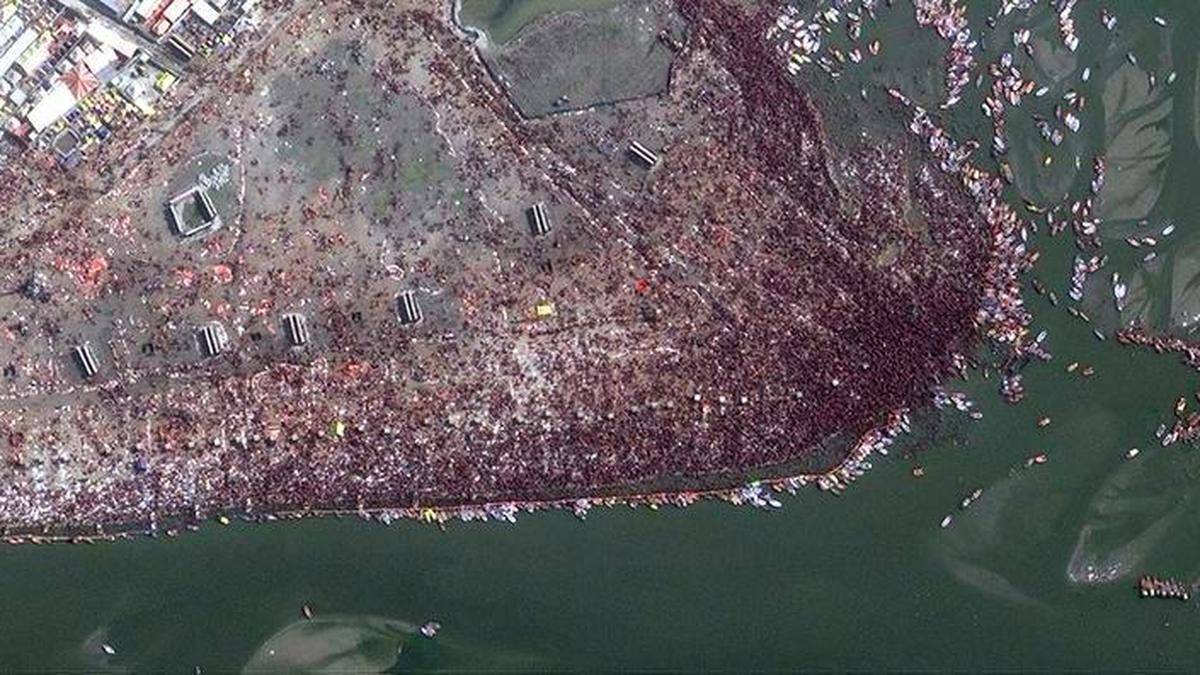
- 02 Feb 2025
In News:
A first-of-its-kind study, commissioned by the Delhi government and conducted by The Energy and Resources Institute (TERI), has revealed the presence of microplastics in groundwater across all 11 districts of Delhi. The interim findings, submitted in November 2024, also reported microplastics in Yamuna River water and soil samples along its banks.
Key Findings:
- Widespread Contamination: Microplastics were found in groundwater samples across Delhi, indicating potential contamination due to leaching from the Yamuna River.
- Additional Contamination: Microplastics were also detected in the Yamuna's water and riverbank soil, suggesting environmental pervasiveness.
- Water Usage Impact: Since Delhi relies on borewells and treated groundwater for drinking and domestic purposes, this contamination raises serious public health concerns.
- No Objection by Authorities: The Delhi government has not disputed the study’s interim findings; further post-monsoon analysis is underway, and a final report is expected later in 2025.
What Are Microplastics?
According to the UN Environment Programme (UNEP):
- Definition: Plastic particles less than 5 mm in size
- Types:
- Primary Microplastics: Manufactured for use in cosmetics (e.g., microbeads) and textiles (e.g., microfibers from clothing, nets)
- Secondary Microplastics: Result from breakdown of larger plastics (e.g., bottles) due to sunlight, abrasion, and ocean waves
Environmental & Health Impacts:
- Persistence: Microplastics are non-biodegradable, mobile, and difficult to eliminate from natural ecosystems.
- Toxicity:
- Can adsorb harmful chemicals, making them more toxic
- Known to bioaccumulate in aquatic food chains
- Human Exposure: Microplastics can enter the human body via:
- Inhalation (air)
- Ingestion (water and seafood)
- Dermal absorption (through skin)
- Health Risks (UNEP Report – From Pollution to Solution, 2021):
- Potential effects on genetics, brain development, respiration, and placental health in newborns
- No global standard exists for safe microplastic limits in drinking water
Ocean Coordination Mechanism (OCM)
- 02 Feb 2025
In News:
Recently, the Intergovernmental Oceanographic Commission of UNESCO (UNESCO-IOC) announced the signature of a Memorandum of Understanding (MoU) enabling the creation of the Ocean Coordination Mechanism (OCM).
What is the Ocean Coordination Mechanism (OCM)?
- It is a collaborative governance initiative aimed at the sustainable management of marine resources in the Caribbean and North Brazil Shelf region.
- Conceived under the 10-year CLME+ Strategic Action Programme (SAP)—endorsed in 2014—it represents a transformative step toward integrated ocean governance.
Key Objectives of OCM:
- Promote sustainable fisheries
- Advance ecosystem restoration and marine spatial planning
- Establish marine protected areas (MPAs)
- Encourage pollution control and blue carbon development
- Foster cross-country and cross-institutional cooperation
It builds on lessons from earlier efforts like the Pacific Islands Regional Ocean Policy (PIROP), aiming to avoid past pitfalls such as vague targets, lack of integration, and funding shortfalls.
Significance of the Caribbean and North Brazil Shelf Region:
- Coral reefs and fisheries contribute ~$610 million annually to local economies
- The North Brazil Shelf is home to over 500 fish species
- Acts as a natural barrier against storms, crucial for climate resilience
Blue Carbon and Climate Action:
The OCM promotes blue carbon projects that utilize coastal ecosystems (like mangroves and seagrasses) for carbon storage, enhancing climate resilience and providing livelihoods to local communities.
Funding Details:
- $15 million from Global Environment Facility (GEF) via the UNDP/GEF PROCARIBE+ Project (2024–2028)
- Additional $126.02 million in co-financing mobilized
- However, the funding is modest compared to initiatives like the Global Fund for Coral Reefs (targeting $3 billion by 2030), raising concerns about OCM's long-term financial sustainability.
Role of IOC-UNESCO:
Established in 1961, the IOC of UNESCO promotes international cooperation in ocean science and policy. Key functions include:
- Marine scientific research (climate, biodiversity, sustainability)
- Tsunami warning systems
- Oceanographic data collection and dissemination
- Leading the UN Ocean Decade (2021–2030) for global marine conservation
Why OCM Matters:
- Addresses the Ocean–Climate–Biodiversity nexus
- Aims to ensure equitable access to marine resources
- Prioritizes local and vulnerable communities
- Integrates traditional knowledge with scientific research for culturally inclusive conservation
Saffron Reedtail Damselfly
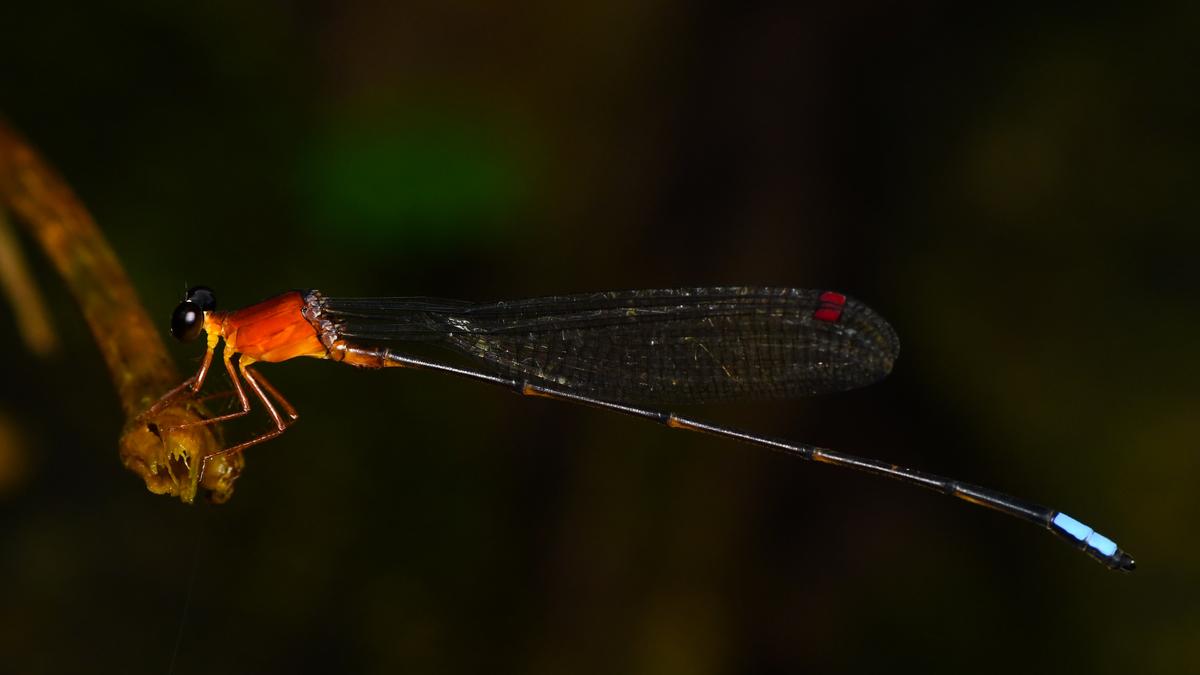
- 02 Feb 2025
In News:
For the first time, the Saffron Reedtail Damselfly, a rare and endemic species of the Western Ghats, has been recorded in Karnataka.
This significant discovery was made in Madhugundi village, Chikkamagaluru district, along the Nethravati River. The findings were published in the journal Entomon.
Key Facts:
- Scientific Name: Indosticta deccanensis
- Common Name: Saffron Reedtail
- Family: Platystictidae (commonly known as shadow damselflies)
- Appearance: Slender, delicate body with a characteristic saffron coloration
- Habitat: Prefers slow-moving forest streams surrounded by thick vegetation; requires pristine water quality
Ecological Significance:
- Indicator Species: Highly sensitive to environmental changes and pollution, indicating a healthy, undisturbed ecosystem.
- Biodiversity Implication:
- Previously recorded only in Tamil Nadu and Kerala.
- The first sighting in Karnataka (northern Western Ghats) extends the known range of the species, suggesting it may be more widely distributed than earlier believed.
Conservation Relevance:
- The discovery underscores the ecological richness of the Madhugundi forests, which were severely affected by floods and landslides in 2019.
- Highlights the urgency to protect fragile ecosystems from deforestation, water pollution, and climate change, especially in biodiversity hotspots like the Western Ghats.
About Damselflies (Order: Odonata):
- General Features:
- Predatory, aerial insects
- Slender bodies with net-veined wings
- Fly weakly compared to dragonflies
- Mostly inhabit freshwater habitats
Rusty-Spotted Cat

- 01 Feb 2025
In News:
For the first time, the Rusty-Spotted Cat (Prionailurus rubiginosus) has been spotted in the forests of Purulia district, West Bengal, captured on a camera trap set up by the NGO HEAL during pangolin poaching surveillance. This marks a significant range extension and has excited conservationists and forest officials.
Key Features
- World’s smallest and lightest wild cat: Weighs between 900 grams to 1.5 kg
- Length: Approx. 1.5 feet, with a 1-foot-long tail
- Appearance:
- Fawn-grey coat with rusty red spots on back and flanks
- Short, rounded head with two white facial streaks
- Large eyes with greyish-brown to amber irises – an adaptation to nocturnal behavior
- Short legs, black-soled feet, and an unmarked rusty tail
- Behavior:
- Nocturnal and elusive
- Uses scent marking to establish territory
- Gestation period: 66–70 days
Habitat and Distribution
- Found in dry deciduous and semi-deciduous forests, including:
- Northern & Central India, Western Ghats, Rajasthan, Kachchh, and Peninsular India
- Also present in Sri Lanka and Nepal
- India hosts 80% of the global population
Conservation Status
- IUCN Red List: Near Threatened, due to habitat loss, fragmentation, and human-wildlife conflict
- Wildlife Protection Act, 1972: Schedule I species (highest protection)
Significance of Purulia Sighting
- Located on the eastern edge of the Chota Nagpur Plateau
- Forests are interconnected with neighboring regions like Jharkhand and Odisha
- Notified as reserved forests, not protected forests
- Threats: Hunting by local communities, habitat degradation
Impact of Conservation Efforts
- Post-COVID, the forest ecosystem in Purulia has improved due to reduced human disturbance
- Past sightings of leopards, bears, jackals, and foxes indicate a thriving ecosystem
- HEAL and the Forest Department have launched livestock compensation programs to reduce retaliatory killings of carnivores
Kurdistan Region
- 01 Feb 2025
In News:
India recently dispatched a humanitarian shipment of medical supplies to the Kurdistan Region in Iraq, reflecting its commitment to global cooperation and humanitarian diplomacy.
About the Kurdistan Region
- Geographical Spread: The Kurdistan Region is a culturally and geographically distinct area predominantly inhabited by ethnic Kurds, spread across:
- Northern Iraq (Erbil, Sulaymaniyah, Dohuk, Halabja)
- Eastern Turkey
- Western Iran
- Northern Syria and parts of Armenia
- Capital: Erbil (Iraq)
- Terrain: Dominated by the Zagros and Taurus mountain systems
- Major Rivers: Tigris River and Greater Zab River, crucial for agriculture and settlement
Ethnic and Political Context
- Kurds: An ethnic group of 25–30 million people, mostly Sunni Muslims, with no official nation-state. They seek autonomy or independence through the Kurdish nationalist movement.
- Kurdistan Regional Government (KRG): An autonomous administration in northern Iraq, managing the Kurd-majority areas with limited sovereignty under Iraq’s federal system.
- Geopolitical Significance:
- Rich in oil and natural gas, especially in Iraqi Kurdistan
- Strategically located, controlling key border regions and trade routes
- Kurdish militia (Peshmerga) played a critical role in the fight against ISIS
Ongoing Political Disputes
- Kurdish Independence Movement:
- The 2017 independence referendum in Iraqi Kurdistan was rejected by Baghdad, followed by economic and military backlash.
- Kurds face resistance from Iraq, Turkey, Iran, and Syria, which fear territorial fragmentation.
- Turkey regularly conducts military operations against Kurdish groups, labeling them as threats to national security.
India-Kurdistan Relations
- Diplomatic Presence: India established a Consulate in Erbil in August 2016 to deepen ties with the Kurdistan Region and Iraq.
- Economic and Workforce Engagement:
- Indian companies have participated in trade fairs in Erbil and Sulaymaniyah.
- A growing number of Indian workers are employed in sectors like:
- Steel mills
- Oil companies
- Construction projects
- Indian workers are valued for their skills and reliability in these industries.
Financialisation
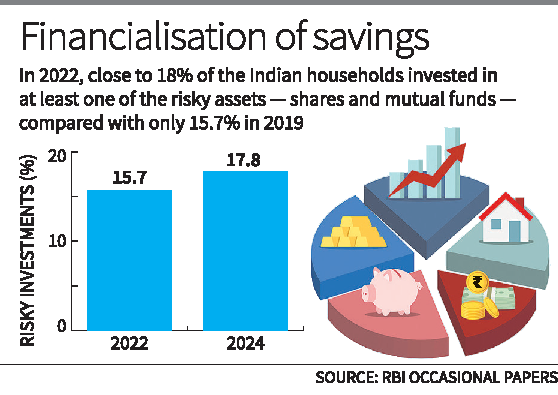
- 01 Feb 2025
In News:
The Economic Survey 2024–25 cautions against the risks of excessive financialisation in India, emphasizing that while finance is a crucial enabler of economic growth, unchecked expansion of the financial sector can pose systemic risks, increase inequality, and divert resources from the real economy.
What is Financialisation?
Financialisation refers to the growing dominance of financial markets, institutions, and motives in shaping economic policies, business decisions, and resource allocation. It involves:
- A shift from productive (real sector) activities like manufacturing to financial activities, including trading, speculation, and asset management.
- Increasing reliance on asset price growth (e.g., stocks, real estate) to stimulate the economy.
- Deep influence of financial motives in corporate governance, economic policies, and household behavior.
Key Drivers of Financialisation in India
- Increased household savings funneled into stock markets.
- Growing retail investor participation in equities and mutual funds.
- Policy and regulation increasingly influenced by financial market considerations.
- Rising public and private sector debt to leverage economic growth.
Risks Highlighted by the Economic Survey
- Real Sector Crowding Out: Over-expansion of the financial sector may compete with the real economy for scarce resources like skilled labour and capital, potentially depriving productive sectors.
- Unsustainable Booms: Rapid financial growth often favours high-collateral, low-productivity investments (e.g., construction) over innovation and manufacturing, creating unsustainable financial booms.
- Complex Financial Products: Proliferation of opaque and complex financial instruments can increase consumer risk exposure and the probability of a financial crisis, as seen during the 2008 global financial meltdown.
- Increased Inequality: Financialisation tends to transfer income from the real sector to the financial sector, worsening income inequality and contributing to wage stagnation.
- Debt Dependency: Over-reliance on financial leverage (debt) increases macro-financial vulnerabilities, especially if credit growth outpaces productive investment.
Global Lessons and Historical Context
- 2008 Global Financial Crisis: Reckless lending and financial engineering, including mortgage-backed securities, led to a global economic collapse. India was impacted indirectly, prompting RBI intervention to stabilise the economy.
- Examples from Ireland & Thailand: Rapid growth of private credit in these countries led to reduced productivity and economic distortions, serving as cautionary tales.
Balanced View on Finance
The Survey recognizes that a well-regulated financial system plays a vital role in:
- Channeling capital to innovative and high-risk ventures.
- Reducing transaction costs and improving price discovery.
- Alleviating poverty and inequality by enabling shock absorption for households and firms.
- Smoothing consumption across economic cycles.
However, the Survey emphasizes that there is a tipping point beyond which financial development becomes counterproductive.
Ultra-Processed Foods (UPFs)
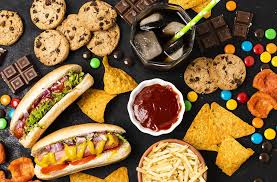
- 01 Feb 2025
In News:
The Economic Survey 2024–25 underscores the adverse impact of Ultra-Processed Foods (UPFs) on public health, particularly among children and youth, and calls for urgent regulatory intervention.
Key Recommendations
- Stringent Front-of-the-Pack Labelling (FOPL): The Survey advocates for clear, enforceable FOPL rules to inform consumers, curb misleading nutrition claims, and restrict aggressive marketing, especially those targeted at children and adolescents.
- Stronger Role for FSSAI: The Food Safety and Standards Authority of India (FSSAI) is advised to:
- Define UPFs clearly in regulation.
- Establish labelling standards.
- Monitor compliance of branded products.
- ‘Health Tax’ Proposal: The Survey proposes higher taxes on UPFs, especially brands engaging in excessive advertising, to act as a deterrent and promote healthier food choices.
- Awareness and Education: It recommends targeted awareness campaigns in schools and colleges, integrated with broader health and lifestyle campaigns, to reduce the rising consumption of UPFs.
Why this matter
- Rising Consumption: According to a 2023 WHO report, India’s UPF consumption grew from $900 million (2006) to over $37.9 billion (2019).
- Long-term National Impact: India's ?2,50,000 crore UPF industry is built on hyper-palatability and is a threat to India’s demographic dividend, productivity, and future economic growth.
Health Risks of UPFs
- Directly linked to:
- Obesity
- Cardiovascular diseases
- Colorectal cancer
- Respiratory and gastrointestinal disorders
- Mental health issues, especially among youth
- Poor dietary intake due to UPFs contributes to micronutrient deficiencies, while synthetic additives may have long-term biological impacts.
What are Ultra-Processed Foods?
UPFs are industrial formulations that undergo extensive processing and typically include:
- Artificial flavours, colours, preservatives, emulsifiers, sweeteners, and other cosmetic additives.
- High sugar, salt, and fat content for taste enhancement.
- Low in essential nutrients such as vitamins, minerals, and fibre.
- Designed for convenience and high palatability, often leading to overconsumption.
Examples of Ultra-Processed Foods
(As per Indian Council of Medical Research - ICMR):
- Commercial bakery items: bread, cakes, biscuits, breakfast cereals
- Snack foods: chips, fries
- Condiments: sauces, jams, mayonnaise
- Dairy & protein products: processed cheese, butter, protein powders, soy chunks, tofu
- Frozen and ready-to-eat foods with additives
- Beverages: energy drinks, health drinks, sweetened fruit juices
- Refined flours of cereals, millets, legumes
- Culinary ingredients containing cosmetic additives like artificial colours or emulsifiers
India adds 4 new Ramsar Sites
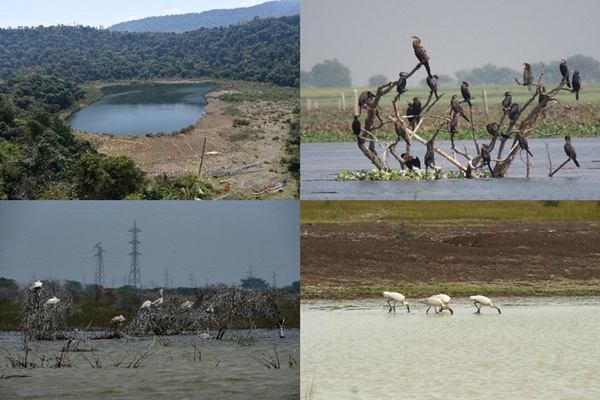
- 01 Feb 2025
In News:
The Government of India has added four new Ramsar sites, increasing the total to 89, the highest in Asia and third globally. The newly designated wetlands include:
- Sakkarakottai Bird Sanctuary (Tamil Nadu)
- Therthangal Bird Sanctuary (Tamil Nadu)
- Khecheopalri Wetland (Sikkim)
- Udhwa Lake (Jharkhand)
This marks a significant milestone as Sikkim and Jharkhand have received their first Ramsar recognitions, while Tamil Nadu strengthens its lead with 20 Ramsar sites, the most among Indian states.
About the Ramsar Convention
- Adopted: 1971 in Ramsar, Iran
- Objective: Conservation and wise use of wetlands through local, national, and international cooperation.
- World Wetlands Day: Celebrated on 2nd February to promote awareness.
Key Highlights:
Therthangal Bird Sanctuary – Tamil Nadu
- Notified in 2010; covers 29.29 ha.
- Crucial breeding and foraging site for waterbirds like Spot-billed Pelican, Black-headed Ibis, and Oriental Darter.
- Aids groundwater recharge and climate regulation.
- Part of the Central Asian Flyway.
Sakkarakottai Bird Sanctuary – Tamil Nadu
- Notified in 2012; spans 230.49 ha.
- Located near Gulf of Mannar; significant stopover for migratory birds.
- Hosts endemic species and near-threatened fauna like Lion-tailed Macaque and Giant Squirrel.
Khecheopalri Wetland – Sikkim
- Sacred lake revered by Buddhists and Hindus; called Sho Dzo Sho locally.
- Known as a wish-fulfilling lake.
- Birds prevent leaves from settling on the surface.
- Rich in avifauna: fishing eagles, Brahminy kites.
- Integral to ecotourism and biodiversity conservation.
Udhwa Lake – Jharkhand
- Comprises Pataura Jheel (155 ha) and Brahma Jamalpur Jheel (410 ha).
- First Ramsar site of Jharkhand; near Ganga River.
- Declared a bird sanctuary in 1991; attracts migratory birds from September onwards.
Falls under the Gangetic Plains biogeographic zone.
MSME Trade Enablement and Marketing (TEAM) Initiative
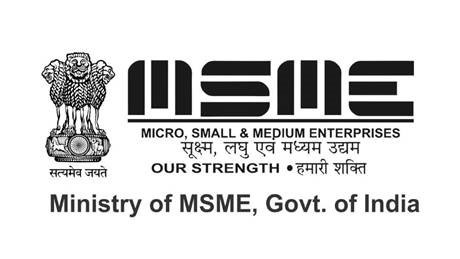
- 31 Jan 2025
In News:
The Ministry of Micro, Small, and Medium Enterprises (MoMSME), in collaboration with the Open Network for Digital Commerce (ONDC), has launched the Trade Enablement and Marketing (TEAM) Initiative. It aims to promote digital commerce among micro and small enterprises (MSEs) in India.
Key Features of TEAM Initiative
- Scheme Under: Raising and Accelerating MSME Productivity (RAMP) Programme
- RAMP is a World Bank-supported Central Sector Scheme implemented from 2022–2027 to enhance market access, technology upgradation, and financial inclusion for MSMEs.
- Objective:
- To empower MSEs through digital commerce integration using ONDC.
- To formalize operations, reduce the cost of doing business, and expand market access.
- To ensure inclusivity with 50% of beneficiaries being women-led enterprises.
- Budget & Duration:
- ?277.35 crore over three years (FY 2024–25 to FY 2026–27).
- Target Beneficiaries:
- 5 lakh MSEs (50% women-led).
- Eligibility: Registered MSEs in manufacturing or service sectors with valid Udyam Registration. Medium enterprises are excluded from most benefits.
- Implementing Agency:
- National Small Industries Corporation (NSIC)
Operational Strategy
- ONDC Integration: MSMEs will be onboarded onto the ONDC network, enabling them to operate digital storefronts with access to interoperable platforms, seamless payment solutions, and logistics services.
- Workshops & Outreach:
- Over 150 workshops will be organized across Tier 2 and Tier 3 cities, especially targeting SC/ST-led and women-led enterprises.
- Workshops will provide training on creating digital catalogues, understanding digital platforms, and maximizing ONDC's benefits.
- Supportive Infrastructure: A dedicated digital portal will offer services including workshop registration, access to finance, grievance redressal, catalogue tools, and account management assistance.
- Financial Assistance: Support to Seller Network Participants for onboarding MSEs and assisting in operational and digital transition needs.
About ONDC:
An initiative of the DPIIT, Ministry of Commerce, ONDC is an open, interoperable network that allows buyers and sellers to transact across multiple digital platforms, aiming to democratize digital commerce and reduce platform monopolies.
National Critical Mineral Mission

- 31 Jan 2025
In News:
The Union Cabinet has launched the National Critical Mineral Mission (NCMM) with a total outlay of ?34,300 crore over seven years, including ?16,300 crore government expenditure and ?18,000 crore investment from PSUs and private players.
Key Highlights:
Objectives of NCMM
- Reduce import dependence on critical minerals vital for clean energy, electronics, defence, and high-tech industries.
- Promote domestic exploration, mining, processing, and recycling of critical minerals.
- Facilitate overseas acquisition of mineral assets.
- Strengthen India’s mineral security and ensure self-reliance (Atmanirbhar Bharat).
Key Features
- Value Chain Coverage: Exploration → Mining → Beneficiation → Processing → Recycling of end-of-life products.
- Fast-track regulatory approvals for mining projects.
- Creation of mineral processing parks and promotion of sustainable extraction technologies.
- Establishing a strategic stockpile of critical minerals.
- Development of a Centre of Excellence on Critical Minerals to support R&D.
- Expansion of PRISM initiative to fund startups and MSMEs in the sector.
- Whole-of-government approach: Collaboration among ministries, PSUs, private sector, and research institutions.
Why Critical Minerals Matter
Critical minerals are essential inputs for:
- Green energy: EV batteries, solar panels, wind turbines.
- Electronics: Semiconductors, fiber optics.
- Defence: Aircraft, missile guidance systems.
- Medical technologies: MRI machines, pacemakers.
India’s clean energy transition and manufacturing competitiveness hinge on a steady and secure supply of these minerals.
India’s Import Dependence
India is dependent on imports, especially from China, for several critical minerals like lithium, cobalt, titanium, graphite, and tellurium. This exposes India to supply chain vulnerabilities amid shifting global geopolitics.
List of 30 Critical Minerals for India
Includes: Lithium, Cobalt, Nickel, Graphite, Rare Earth Elements (REEs), Beryllium, Titanium, Tungsten, Gallium, Indium, Selenium, Cadmium, etc.
Strategic and Legislative Initiatives
- Amendment to MMDR Act (1957) in 2023: Enabled auction of 24 critical mineral blocks.
- OAMDR Act (2002) amendment: Introduced transparent offshore mineral exploration.
- Duty waivers in Union Budget 2024–25: Customs duties removed on key critical minerals to promote domestic processing.
- Exploration by GSI: 368 projects in last 3 years; 227 more planned for FY 2025–26.
- KABIL: Acquired 15,703 ha in Argentina for lithium mining.
Global Context
- Global powers (US, EU, Japan) are pursuing strategies for critical mineral security.
- China dominates refining of lithium, cobalt, and REEs.
- India is part of the Minerals Security Partnership (MSP) to diversify global mineral supply chains.
Significance for India
- Ensures long-term resource security for clean technologies.
- Supports EV and renewable energy manufacturing goals.
- Enhances strategic autonomy in defence and electronics.
- Makes India an attractive hub for foreign investment in green technologies.
Challenges and the Way Forward
- Geopolitical risks in overseas asset acquisition.
- Environmental impacts of large-scale mining.
- Need for strong R&D ecosystem, financial incentives, and public-private partnerships.
- Sustainable mining practices and global collaboration are essential for long-term success.
Contract Farming in India
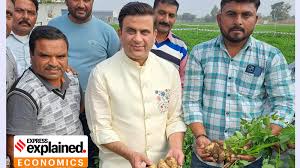
- 31 Jan 2025
In News:
Contract farming has emerged as a significant model in India's agricultural landscape, especially with its success in processed potato cultivation and the recent rise in French fry exports. As the country transitions from being an importer to a major exporter in sectors like frozen French fries, the contract farming model underpins the structural transformation of Indian agriculture.
Understanding Contract Farming
Contract farming is an agricultural production system where farmers and buyers (agribusinesses, processors, exporters, or retailers) enter into a pre-harvest agreement. This contract outlines key parameters including price, quality, quantity, delivery schedules, and in many cases, input provision and technical assistance.
Types of Contract Farming Arrangements
- Direct Input Provision by the Company: Firms supply seeds, fertilizers, and support services, deducting costs from the final payment to farmers.
- Partnership with Local Input Dealers: A hybrid model balancing company control with third-party services, chosen based on crop complexity, local support availability, and firm capabilities.
Advantages of Contract Farming
- Stable and Enhanced Income: Contracts assure farmers of a fixed price and market access, shielding them from volatile markets. RBI data shows farmers typically receive only 31%–43% of consumer prices; contract farming can significantly improve this share.
- Access to Inputs and Technology: Companies provide high-quality seeds, fertilizers, training, and modern farming practices, leading to improved yields and quality.
- Post-Harvest Efficiency: Streamlined procurement reduces wastage of perishables and post-harvest losses, ensuring efficient supply chain management.
- Credit and Financial Support: Assured incomes help farmers access institutional credit, reducing dependency on informal lenders.
- Food Safety and Export Standards: Training on pesticide use and residue limits ensures compliance with international standards like Maximum Residue Limits (MRLs), boosting export potential.
- Consumer Benefits: Direct procurement reduces intermediaries, enabling competitive pricing and higher quality products.
- Technology Transfer: Farmers benefit from the introduction of new, high-efficiency production techniques.
Concerns and Challenges
- Power Imbalance: Small and marginal farmers often lack bargaining power. This dependency may lead to exploitative contracts or one-sided terms, especially where firms demand investments in crop-specific infrastructure.
- Market Risk and Default: Price volatility can lead to side-selling by farmers or contract breaches by firms when market prices crash.
- Delayed Payments and Inputs: Contractual delays in payment or input delivery can severely affect crop cycles and farmer finances.
- Exclusion of Marginal Farmers: For economies of scale, firms often prefer large landholders, sidelining smallholders.
- Environmental Impact: Monocropping, overuse of water and agrochemicals, and soil degradation threaten long-term sustainability.
- Food Security Trade-offs: A shift to high-value crops under contracts may reduce acreage for food crops, impacting local food security.
- Loss of Autonomy: Farmers may lose control over farming decisions, with firms determining most aspects of cultivation, leading to indirect control over land use.
Case Study: Contract Farming in Potato Sector
India is the second-largest potato producer globally, with Uttar Pradesh, West Bengal, and Bihar as leading states. The Central Potato Research Institute (CPRI), Shimla developed several high-yielding Kufri varieties to support commercial cultivation.
The success of processed potato farming is best illustrated by India’s emergence as an exporter of frozen French fries, driven by contract-based procurement from farmers. However, issues such as the PepsiCo vs. Indian farmers legal dispute over unauthorized cultivation of the FL 2027 variety underline ongoing concerns around intellectual property rights and farmers’ autonomy.
Policy and Legal Framework
- Model APMC Act, 2003: Introduced contract registration, dispute resolution, and exempted market fees while protecting land ownership.
- Model Agricultural Produce and Livestock Contract Farming Act, 2018: Proposed institutional frameworks, insurance provisions, and promotion of Farmer Producer Organizations (FPOs).
- e-NAM Integration: Supports transparent pricing and contract enforcement.
- National Agriculture Policy: Endorses contract farming as a tool for enhancing productivity and rural incomes.
Bharat Sovereign Wealth Fund (BSWF)
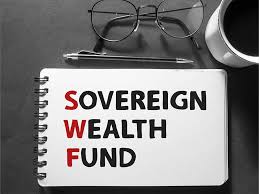
- 31 Jan 2025
In News:
India is actively exploring the creation of a Bharat Sovereign Wealth Fund (BSWF) or The Bharat Fund (TBF) to harness the untapped wealth embedded within its public sector ecosystem. This fund aims to unlock and strategically manage dormant capital, estimated at ?40 lakh crore ($450–500 billion), primarily held in equity stakes of around 80 listed public sector enterprises (PSEs) and banks.
What is a Sovereign Wealth Fund (SWF)?
A Sovereign Wealth Fund is a state-owned investment vehicle that manages national savings or surplus revenues—often derived from foreign exchange reserves, natural resource exports, or trade surpluses.
According to the Santiago Principles (2008), SWFs:
- Are owned by the general government (central or sub-national),
- Invest primarily in foreign financial assets, and
- Aim to achieve financial objectives rather than monetary policy.
Types of SWFs include:
- Stabilization Funds: Cushion fiscal shocks from revenue volatility.
- Future Generation Funds: Preserve wealth for long-term national benefit.
- Strategic Development Funds: Support priority sectors and national growth.
- Reserve Investment Funds: Enhance returns on foreign currency reserves.
Examples include:
- Norway’s Government Pension Fund Global ($1.7 trillion),
- China Investment Corporation ($1.35 trillion),
- Abu Dhabi Investment Authority ($993 billion).
India’s SWF Landscape and the BSWF Proposal
India previously explored SWF models in 2007–08 and again in 2010–11. While the National Investment and Infrastructure Fund (NIIF) was launched in 2015, it remains sector-specific and limited in scale. The proposed BSWF envisions a comprehensive and transformational fund akin to global best practices.
Key features of the BSWF proposal:
- Consolidation of government equity in PSEs and PSU banks under a professionally managed umbrella.
- Strategic divestment—e.g., reducing government stake from 51% to 40%—without losing operational control.
- Leveraging this pooled equity to attract global co-investors, potentially unlocking tens or hundreds of billions in foreign capital.
Why India Needs the Bharat SWF
- Wealth Unlocking: Potential monetization of over ?40 lakh crore in dormant government equity assets.
- Fiscal Prudence: Even a modest 2% annual divestment could yield $10+ billion, narrowing the fiscal deficit from 4.9% to ~4.6% of GDP.
- Strategic Sector Investment: Deployment into high-potential sectors—AI, semiconductors, electric vehicles, hydrogen energy, biotechnology—to drive innovation and economic leadership.
- Attracting Global Capital: Enhanced investor confidence, especially from established SWFs like those of Singapore, Norway, and Abu Dhabi, which are already increasing exposure in Indian equities and infrastructure.
- Social Sector Funding: Generate non-debt financial resources for welfare programs and national development missions.
- Soft Power Projection: Fund ventures, disaster relief, and advocacy efforts, strengthening India’s international standing.
Governance and Reform Imperatives
For the BSWF to succeed, it must:
- Be governed by a clear legal and regulatory framework aligned with Santiago Principles.
- Operate independently, with professional asset managers, market-based remuneration, and arm’s length oversight.
- Transition PSEs to function with autonomy and efficiency, reducing bureaucratic delays and enabling innovation.
- Foster joint ventures to turn around non-performing PSEs—among the 1,830 PSEs, around 400 remain non-functional, demanding nearly ?9 lakh crore annually in budgetary support.
Challenges and Concerns
- Macroeconomic Constraints: India faces a current account deficit and substantial fiscal pressures—conditions unlike traditional SWF-rich nations.
- Geopolitical and Market Risks: Global uncertainty and decoupling trends could impact cross-border investment strategies.
- Environmental and Technological Vulnerabilities: Investment risks in carbon-heavy sectors and exposure to data fraud or tech disruptions.
- Institutional Resistance: Political and bureaucratic inertia may delay implementation unless national interest is prioritized.
SWF Investments in India: A Growing Trend
Foreign SWFs are already deepening their footprint in India:
- $6.7 billion in direct investments in 2022 (up from $4.3 billion in 2021).
- Preferred sectors: healthcare, entertainment, renewables, infrastructure.
- Beneficiaries of tax exemptions on direct infrastructure investments via InVITS (Infrastructure Investment Trusts) and AIFs (Alternative Investment Funds), valid for investments made before March 31, 2024.
These incentives have encouraged foreign SWFs to explore establishing physical presence in India’s financial hubs, especially GIFT City, Gandhinagar.
Environment Protection (End-of-Life Vehicles) Rules, 2025
- 31 Jan 2025
In News:
MoEFCC Notifies Rules for End-of-Life Vehicles to Minimize Waste and Pollution.
Key Highlights:
Notified by: Ministry of Environment, Forest and Climate Change (MoEF&CC)
Effective from: April 1, 2025
Legal Basis: Environment Protection Act, 1986
Objective: To promote environmentally sound management of end-of-life vehicles (ELVs), enable recycling and reuse of vehicle components, and reduce resource extraction, pollution, and waste generation.
Key Features of the ELV Rules, 2025
1. Scope and Coverage
- Applicable to all vehicle categories including electric vehicles (EVs), e-rickshaws, and e-carts.
- Exempted vehicles: Agricultural tractors, trailers, combine harvesters, and power tillers.
- Exempted waste types: Batteries, plastics, tyres, used oil, and e-waste (governed under separate waste management rules).
2. Extended Producer Responsibility (EPR)
- Vehicle producers are mandated to meet annual scrapping targets based on the age of vehicles:
- Transport vehicles: 15 years
- Non-transport vehicles: 20 years
- Producers must fulfill their EPR obligations for all vehicles introduced into the domestic market, including those used internally.
- Annual EPR declarations must be submitted to the Central Pollution Control Board (CPCB) by April 30 each year.
- Producers must promote ELV deposition at designated collection centres or Registered Vehicle Scrapping Facilities (RVSFs).
3. Responsibilities of Stakeholders
- Registered Owners & Bulk Consumers: Required to deposit ELVs at designated centres or RVSFs within 180 days of becoming unfit.
- Collection Centres:
- Handle ELVs in an environmentally responsible manner.
- Maintain records and ensure safe storage and transfer to RVSFs.
- Registered Vehicle Scrapping Facilities (RVSFs):
- Undertake depollution, dismantling, segregation, and recycling.
- Ensure environmentally sound disposal of non-recyclables via authorized TSDFs.
- Issue EPR certificates based on the volume of steel processed; valid for 5 years.
4. Monitoring, Compliance, and Penalties
- CPCB and State Pollution Control Boards (SPCBs) are responsible for:
- Registration, inspection, and audit of producers, RVSFs, and bulk consumers.
- Taking action against non-compliance, including suspension or cancellation of registration.
- Levying environmental compensation for violations that cause harm to public health or the environment.
5. Registration & Certification
- Producers register with CPCB; RVSFs and bulk consumers with respective SPCBs.
- Registration certificates are issued within 15 days of application via a centralized online portal.
- EPR certificates are non-transferable and allow adjustment of both current and backlog obligations.
Related Policy and Incentives by MoRTH
The Ministry of Road Transport and Highways (MoRTH) supports the ELV Rules through:
- Vehicle Scrapping Policy: Targets voluntary phasing out of unfit and polluting vehicles.
- Motor Vehicles (Registration and Functions of Vehicle Scrapping Facility) Rules, 2021: Provides operational criteria for RVSFs.
- Central Motor Vehicles (Amendment) Rules, 2021:
- Waiver of registration fee for buyers submitting ELV Certificates of Deposit.
- Concession in motor vehicle tax: 25% for non-transport, 15% for transport vehicles.
Electric Mobility Push
- MoRTH has issued several notifications promoting EVs, including:
- Permit exemptions for battery-operated and ethanol/methanol-fueled vehicles.
- Fee exemptions for registration and renewals.
- Tourist permit benefits for EVs and distinct registration marks for visibility.
PM E-DRIVE Scheme
- Launched by Ministry of Heavy Industries on 29th September 2024 with a ?10,900 crore outlay.
- Aims to support electric 2-wheelers, 3-wheelers, ambulances, trucks, and buses with ?3,679 crore in demand incentives.
- Targets subsidization of over 28 lakh EVs.
F11 Bacteria
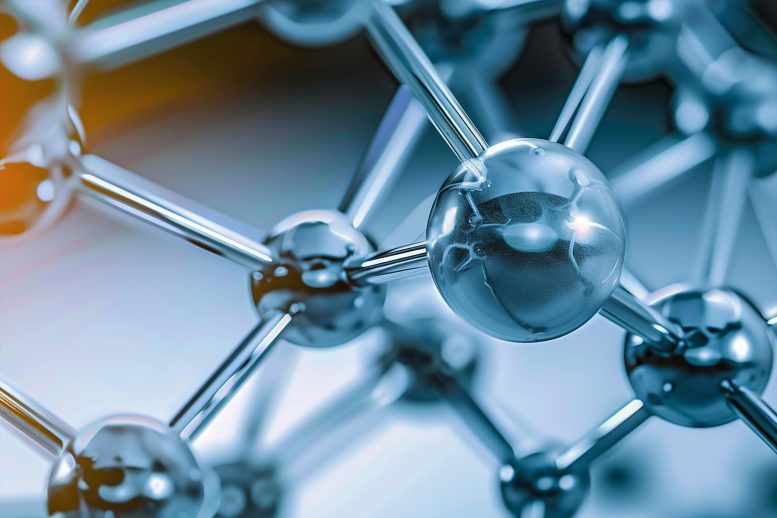
- 30 Jan 2025
In News:
A recent scientific study has identified a bacterial strain, Labrys portucalensis F11 (commonly referred to as F11), capable of degrading per- and polyfluoroalkyl substances (PFAS) — popularly known as “forever chemicals” — by breaking their strong carbon-fluorine (C-F) bonds.
About F11 Bacteria:
- Scientific Name: Labrys portucalensis F11
- Family: Xanthobacteraceae
- Nature: Aerobic and pollutant-resistant bacterium
- Origin: Isolated from industrially contaminated soil in Portugal
- Significance:
- Adapted to thrive in toxic environments
- Uses environmental contaminants as an energy source
- Capable of degrading at least three types of PFAS and certain toxic byproducts
What Are Forever Chemicals (PFAS)?
- Definition: A group of synthetic, man-made chemicals known for their extremely strong C-F bonds, making them persistent and non-biodegradable.
- Why Called 'Forever':
- Resistant to natural breakdown
- Found in air, rainwater, and soil for decades or longer
- Health & Environmental Hazards:
- Linked to cancer, hormonal disorders, immune dysfunction, and environmental toxicity
- Migrate into soil, water, and air during production and use
- Regulation: Certain PFAS are listed under the Stockholm Convention on Persistent Organic Pollutants
Relevance for India and the World:
- Global Impact:
- PFAS are used in a wide range of consumer products such as non-stick cookware, firefighting foams, and food packaging.
- Their persistence poses long-term risks to public health, groundwater contamination, and biodiversity.
- India's Concern:
- Increasing industrialization and waste mismanagement heighten PFAS exposure risks.
- No comprehensive PFAS regulation in place yet; calls for adopting stringent environmental safety norms.
WHO Guidelines on Lower-Sodium Salt Substitutes (LSSS)
- 30 Jan 2025
In News:
Recently, the World Health Organization (WHO) issued new guidelines promoting the use of Lower-Sodium Salt Substitutes (LSSS) to tackle the global burden of hypertension, cardiovascular diseases (CVDs), and stroke, which are largely driven by excessive sodium consumption. This is especially relevant for countries like India, with a high prevalence of high blood pressure and salt consumption.
What Are Lower-Sodium Salt Substitutes (LSSS)?
- LSSS are alternatives to regular table salt, where sodium chloride (NaCl) is partially replaced by potassium chloride (KCl), magnesium sulphate, or calcium chloride.
- They are designed to retain the taste of regular salt while significantly reducing sodium intake and improving heart health.
- LSSS can help lower blood pressure, thanks to the potassium content, which helps balance fluid levels and offset sodium’s harmful effects.
Key WHO Recommendations:
- Daily sodium intake should be restricted to less than 2 grams per day, equivalent to about 5 grams of salt.
- Avoid regular table salt, and replace it, wherever safe, with LSSS for household use.
- LSSS use is not recommended for:
- Pregnant women
- Children
- Individuals with kidney impairments or those requiring low-potassium diets
- The guidelines do not apply to packaged or restaurant foods, which are major contributors to overall sodium intake.
Why Is This Important or India?
- Salt Intake in India: Average salt consumption is 10.4 grams/day, over double the WHO recommendation.
- Hypertension Prevalence: Over 35.5% of India’s population (approx. 315 million people) suffers from hypertension (INDIAB Study).
- CVD Burden: Cardiovascular diseases accounted for 28.1% of all deaths in India (2016) – Global Burden of Disease Study.
- Dietary Impact: Globally, 8 million deaths annually are diet-related, with 1.9 million directly linked to high sodium intake.
Implementation and Policy Measures:
- India’s Response:
- The Food Safety and Standards Authority of India (FSSAI) has initiated sodium reduction policies.
- Edible salt must contain 97% sodium chloride, with anticaking agents limited to 2.2%.
- New labelling norms enforce accurate “low sodium” and “sodium-free” claims.
Public Health and Safety Considerations:
- While LSSS are safe and beneficial for most adults, excess potassium can cause hyperkalemia, especially dangerous for those with kidney disease.
- WHO guidelines aim to maximize benefits and minimize risks by promoting regulated, evidence-based usage.
- Governments, policymakers, and health professionals are urged to integrate LSSS into public health strategies, especially in high-risk populations.
About WHO:
- Established in 1948, the World Health Organization is the UN agency dedicated to promoting global health, preventing disease, and coordinating international health responses.
- It leads efforts for universal health coverage and responds to global health emergencies.
Aroma Mission
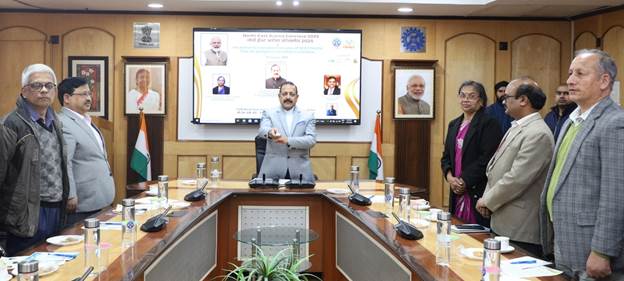
- 30 Jan 2025
In News:
The Aroma Mission, also known as the Lavender Revolution, is emerging as a transformative initiative for regions like Jammu & Kashmir and the North East, prioritised under Prime Minister Narendra Modi’s vision for inclusive development.
It aims to harness the untapped potential of India’s biodiverse regions through the scientific cultivation of aromatic crops and production of essential oils, with the dual goals of economic upliftment and sustainable innovation.
Key Objectives and Features:
- Launched By: Ministry of Science & Technology
- Nodal Agency: CSIR-Central Institute of Medicinal and Aromatic Plants (CIMAP), Lucknow
- Started In: Jammu & Kashmir, now extended to the North East
- Known As: Lavender Revolution
- Purpose: Boost India’s aroma industry by promoting the cultivation of high-value aromatic crops and increasing the production of essential oils.
Major Focus Areas:
- Crops Cultivated: Lavender, lemongrass, citronella, palmarosa, vetiver, patchouli, rose, peppermint, and chamomile
- Target Sectors: Cosmetics, aromatherapy, pharmaceuticals, and food flavouring industries
Impact and Achievements:
- Over 5,000 hectares brought under aromatic crop cultivation in the North East.
- Establishment of 39 essential oil distillation units.
- Distribution of 1 lakh agarwood saplings planned to boost the region's share in global aromatic plant trade.
- Expected annual essential oil production: 2,000 tonnes, valued at over ?300 crores.
- Estimated to generate 60 lakh man-days of rural employment.
- Projected increase in farmers’ income by ?60,000–?70,000 per hectare annually.
Institutional Support: IICON – Incubation and Innovation Complex
- Location: CSIR-North East Institute of Science and Technology (CSIR-NEIST), Jorhat, Assam
- Launched By: Dr. Jitendra Singh (Minister of Science & Technology)
- Purpose: Provide technical assistance, advanced facilities, and business incubation support for startups, MSMEs, and SHGs.
- Facilities: Access to 27 cutting-edge technologies for up to two years to help refine production and marketing strategies.
Integrated Development Approach:
The Aroma Mission exemplifies the “whole-of-government” approach, aligning with various flagship programmes such as:
- Start-Up India
- MSME Development
- Doubling Farmers’ Income
- Women Empowerment (e.g., through Rural Women Technology Parks)
- Act East Policy (enhancing North East's connectivity and trade potential)
Over 25 startups and self-help groups have already been empowered through access to facilities and entrepreneurial training at IICON, contributing to local innovation ecosystems.
Strategic Significance:
- Regional Empowerment: Converts underutilised natural resources into economic assets, especially in remote regions like J&K and the North East.
- Environmental Sustainability: Encourages eco-friendly cultivation and reduces pressure on traditional farming.
- Economic Diversification: Supports India’s transition to a bio-economy, with aromatic plant industries offering export potential and rural employment.
- Vision India@2047: Positions the North East as a hub for biotechnology, essential oils, innovation, and trade, aligning with long-term national growth goals.
Olive Ridley Turtles
- 30 Jan 2025
In News:
The Rushikulya river mouth in Odisha is witnessing the anticipated mass nesting of Olive Ridley turtles — a critical event for the survival of this vulnerable marine species. This phenomenon, known as arribada, highlights the ecological significance of India’s coastal biodiversity and the urgent need for marine conservation.
About Olive Ridley Turtles (Lepidochelys olivacea)
- Taxonomy:
- Scientific Name: Lepidochelys olivacea
- Class: Reptilia
- Family: Cheloniidae
- Physical Features: These turtles are the smallest and most abundant of all sea turtle species. They are recognized by their olive or grayish-green heart-shaped carapace. Males and females are similar in size, though females have slightly rounder shells.
- Habitat and Distribution: Olive Ridleys are found in warm, tropical waters of the Pacific, Atlantic, and Indian Oceans, inhabiting both open ocean (pelagic) and coastal waters.
Mass Nesting: The Arribada Phenomenon
- Arribada (Spanish for "arrival") refers to the synchronized mass nesting behavior where thousands of females gather on a single beach to lay eggs.
- Nesting occurs annually between December and March, after long migrations of up to 9,000 km. Each female may lay 90–120 eggs, 1 to 3 times per season.
- Temperature-dependent sex determination influences hatchling sex ratios.
- After nesting, females return to the sea, leaving eggs buried in sand.
Major Nesting Sites in India
- Odisha Coast is the most significant nesting ground in India and globally:
- Gahirmatha Marine Sanctuary: World’s largest mass nesting site.
- Rushikulya River Mouth: Second-largest nesting beach in India.
- Devi River Mouth: Another key nesting site in Odisha.
- Andaman and Nicobar Islands have recently emerged as a new mass nesting area, with over 5,000 nests reported in one season.
Ecological Role and Behavior
- Diet: Omnivorous — they feed on jellyfish, crabs, snails, prawns, molluscs, algae, and small fish.
- Behavior: These turtles undertake long migrations annually between feeding and breeding grounds, spending most of their lives at sea.
Protection Status
- IUCN Red List: Vulnerable
- CITES: Appendix I
- Wildlife (Protection) Act, 1972 (India): Schedule I (highest protection)
Threats to Survival
- Bycatch in Fishing Gear: Accidental entanglement in trawls, gillnets, and longlines.
- Habitat Loss: Coastal development for ports, tourism, and industry disrupts nesting beaches.
- Poaching: Turtles and their eggs are harvested for meat, shell, and leather.
- Pollution: Plastic ingestion and marine debris pose severe health risks.
- Climate Change: Rising sea levels and increased sand temperatures impact nesting and hatchling sex ratios.
Conservation Initiatives
- Operation Olivia: Initiated by the Indian Coast Guard in the 1980s to protect turtles during nesting and prevent illegal fishing.
- Turtle Excluder Devices (TEDs): Mandated by the Odisha government in trawl nets; allow turtles to escape while retaining fish catch.
- Tagging Programs: Use of non-corrosive metal tags to study migration patterns and inform conservation strategies.
Global Investment Trends and India’s FDI Outlook
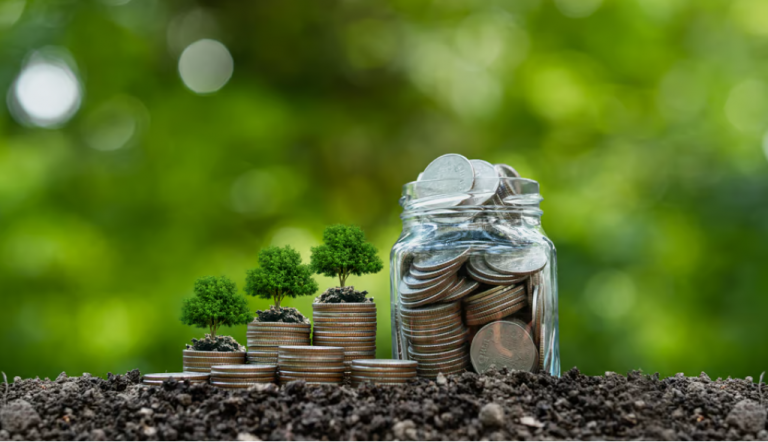
- 30 Jan 2025
In News:
The Global Investment Trends Monitor Report 2024, released by the United Nations Conference on Trade and Development (UNCTAD), highlights a concerning decline in international project finance and Foreign Direct Investment (FDI), particularly in developing economies. This has significant implications for sustainable development, especially in emerging economies like India.
Key Findings from the UNCTAD Report (2024)
Global FDI Trends:
- Global FDI flows, after adjusting for conduit economies, fell by 8% in 2024, despite a nominal increase to USD 1.4 trillion.
- Developed economies witnessed a 15% drop in FDI (excluding conduit economies like Ireland and Luxembourg), while developing economies saw a 2% decline.
- The decline threatens long-term investment in infrastructure, renewable energy, and other SDG-aligned sectors.
Project Finance and Greenfield Investment:
- International project finance declined by 29% in developed and 23% in developing economies.
- In terms of value, developing economies faced a sharper fall of 33%.
- Key countries like India, China, Brazil, Indonesia, and Mexico reported steeper declines than the global average.
- Greenfield investments fell 6% in developing regions, with Africa and Asia being worst affected.
Sectoral Impacts:
- Investments in SDG-related sectors (e.g., water, sanitation, agrifood systems, and infrastructure) declined by 11%.
- International renewable energy finance fell 16%, with North America (-22%) and developing Asia (-18%) seeing notable contractions.
- Africa was the only region to witness an 8% increase in renewable energy project finance.
India’s FDI Landscape: Trends, Opportunities, and Challenges
Recent Performance:
- Between April 2000 and September 2024, India received over USD 1 trillion in cumulative FDI.
- From 2014 to 2024, India attracted USD 667.4 billion, a 119% increase over the previous decade.
- In 2024, India’s greenfield projects grew, but international project finance fell 23% in number and 33% in value.
Regulatory Framework:
- FDI is regulated under the Foreign Exchange Management Act (FEMA), 1999, administered by DPIIT, Ministry of Commerce and Industry.
- Prohibited sectors: Atomic energy, betting, lotteries, chit funds, tobacco, and real estate (excluding construction development).
Outlook for 2025 and Strategic Opportunities
Global FDI Projections:
- UNCTAD anticipates moderate global FDI growth in 2025.
- Regions like ASEAN, Eastern Europe, and Central America may benefit from supply chain realignments.
- India is projected to see a moderate rise in FDI, aided by:
- Improved financing conditions,
- Mergers and acquisitions,
- Ongoing policy reforms.
Key Growth Sectors:
- High potential in AI, cloud computing, cybersecurity, electric vehicles, and green hydrogen.
- FDI will be influenced by geopolitical dynamics, interest rates, GDP growth, and technological transitions.
FDI in India: Opportunities and Challenges
Opportunities:
- Large consumer base (1.4 billion population) and young workforce (65% under 35).
- Government schemes like Make in India and Atmanirbhar Bharat incentivize foreign investment.
- Strategic location positions India as a gateway to South Asia, the Middle East, and Southeast Asia.
Challenges:
- Regulatory complexity, including retrospective taxation and bureaucratic delays.
- Infrastructure deficits, particularly outside urban hubs.
- Rigid labour laws and inconsistent policy enforcement.
Investor Expectations:
- Technology transfer in priority sectors.
- Employment generation to absorb India’s growing labor force.
- Sustainable investments in line with India’s climate commitments under the National Action Plan on Climate Change.
Asian Waterbird Census 2025
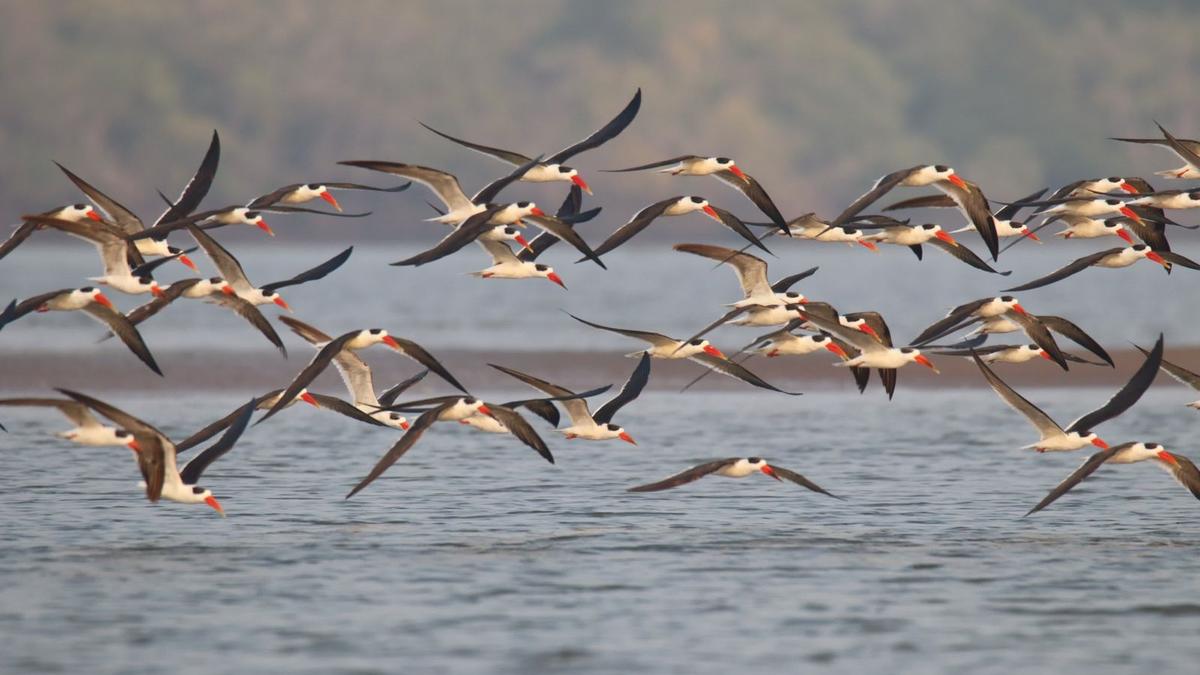
- 29 Jan 2025
In News:
As per the Asian Waterbird Census-2025, a record number of 39,725 birds belonging to 106 species have been sighted in the Coringa Wildlife Sanctuary and adjoining wetlands.
Asian Waterbird Census (AWC): An Overview
- AWC is an annual citizen-science programme that supports the conservation of wetlands and waterbirds across Asia.
- Initiated in 1987 in the Indian subcontinent, it now covers extensive regions of East and Southeast Asia, Japan, Australasia, and parts of the Central Asian and East Asian–Australasian Flyways.
- AWC is the Asian chapter of the global International Waterbird Census (IWC).
- In India, it is coordinated by the Bombay Natural History Society (BNHS) and the Wildlife Institute of India (WII) every January.
About BNHS (Bombay Natural History Society)
- An Indian NGO engaged in biodiversity research and conservation.
- Recognized as a Scientific and Industrial Research Organisation (SIRO) by the Department of Science and Technology.
- Official partner of BirdLife International in India.
Coringa Wildlife Sanctuary (Andhra Pradesh): Census Findings 2025
- The Asian Waterbird Census 2025 recorded a record 39,725 birds representing 106 species in the Coringa Wildlife Sanctuary (CWS) and adjoining Godavari estuary wetlands.
- Of these, nearly 70 species are migratory, using the site as a key winter feeding ground.
Species of Conservation Concern
- Endangered species sighted:
- Indian Skimmer (Rynchops albicollis) – ~450 individuals sighted
- Black-bellied Tern (Sterna acuticauda)
- Great Knot (Calidris tenuirostris)
- Vulnerable species: Common Pochard (Aythya ferina)
- Near Threatened species: 11 species identified
Migratory Pathways and Monitoring
- Migrants such as the Great Knot travel from Russia, Siberia, China, and Mongolia to the Godavari estuary.
- A tagged Great Knot, tracked from Russia, was recorded after a 7,500 km journey, seen in Bhairavapalem mudflat and Etimoga wetland in successive winters (2024 and 2025).
- Data sharing with global avian research groups aids in tracking migratory patterns and supports conservation of endangered species.
Ecological and Ramsar Significance
- The Godavari estuary supports feeding grounds for nearly 90,000 birds, as observed by CWS authorities.
- Avian diversity is a key criterion for Ramsar Site designation, and experts advocate for Coringa Wildlife Sanctuary and its surroundings to be recognized as a wetland of international importance under the Ramsar Convention.
Resumption of Kailash Mansarovar Yatra
- 29 Jan 2025
In News:
After a four-year hiatus due to the COVID-19 pandemic and the 2020 Galwan Valley clash, India and China have agreed to resume the Kailash Mansarovar Yatra in June 2025, along with other confidence-building measures.
This decision aligns with the 75th anniversary of India-China diplomatic relations, symbolizing an attempt to stabilize and recalibrate bilateral ties through people-centric initiatives.
Key Highlights:
Key announcements include:
- Resumption of the Kailash Mansarovar Yatra
- Restoration of direct air services
- Visa issuance for journalists and think tanks
- Hydrological data sharing and cooperation on trans-border rivers
- Enhanced people-to-people exchanges and academic/media dialogues
About the Yatra
- The Yatra involves a pilgrimage to Mount Kailash and Lake Mansarovar in the Tibetan Autonomous Region (Xizang).
- Organised by India’s Ministry of External Affairs between June–September, via two routes:
- Lipulekh Pass (Uttarakhand)
- Nathu La Pass (Sikkim)
- Supported by the state governments of Uttarakhand, Sikkim, and Delhi, and coordinated with the Indo-Tibetan Border Police.
- Open only to Indian citizens with valid passports; no financial subsidy is provided by the Government of India.
Geographical and Religious Significance:
- Mount Kailash, located in the Kailash Range (Transhimalaya), is the source of four major rivers: Sutlej, Brahmaputra, Indus, and Karnali.
- Revered across religions:
- Hindus consider it the abode of Lord Shiva; Mansarovar is one of the 51 Shaktipeeths.
- Buddhists and Tibetans regard it as the ‘Stairway to Heaven’.
- Jains believe Rishabhanatha attained enlightenment here—referred to as Ashtapada.
Diplomatic Interpretations and Differences
- India’s Position: Emphasized a step-by-step, cautious approach focusing on rebuilding trust and resolving contentious issues, particularly the border situation. India sought policy predictability and transparency in trade, and reaffirmed the importance of mutual respect and interests.
- China’s Position: Took a more optimistic and strategic stance, stressing the need to avoid "mutual suspicion" and to advance cooperation based on long-term national interests. It emphasized early action, including the swift resumption of the Yatra and flights.
Ongoing Concerns in Bilateral Relations
- Unresolved Border Disputes:
- Tensions persist along the Line of Actual Control (LAC)—notably in Galwan (2020) and Tawang (2022).
- India and China have made limited progress in resolving issues in Depsang and Demchok.
- Trade Imbalance:
- Bilateral trade in 2023–24 stood at USD 118.4 billion, with India facing a trade deficit of USD 85 billion.
- India raised concerns on market access and non-tariff barriers.
- China-Pakistan Axis:
- The China-Pakistan Economic Corridor (CPEC) runs through Pakistan-occupied Kashmir, violating India’s territorial sovereignty.
- China’s support for Pakistan in multilateral forums remains a thorn in bilateral ties.
- China’s Regional Assertiveness:
- Expanding influence in South Asia and the Indian Ocean through the String of Pearls, strategic presence in Maldives, Sri Lanka, and strong claims in the South China Sea, contribute to regional unease.
Significance of the Current Diplomatic Thaw
- The resumption of the Kailash Mansarovar Yatra reflects a symbolic softening in ties, emphasizing religious diplomacy and people-to-people connection.
- Restoration of direct flights and journalistic presence can aid in reducing mistrust.
- Hydrological cooperation, particularly over the Brahmaputra River, is essential for India’s water security, especially with China constructing mega-dams upstream.
Way Forward
- Rebuild Trust Through Engagement: Maintain diplomatic dialogues via platforms like BRICS, SCO, and G20, while holding to core national interests.
- Resolve Border Disputes: Pursue early finalization of the LAC through confidence-building agreements and military disengagement.
- Diversify Economic Strategy: Reduce dependency on Chinese imports by strengthening domestic manufacturing and regional trade alternatives.
- Enhance Cultural Diplomacy: Use platforms like the Kailash Yatra to foster mutual understanding rooted in shared civilizational values.
- Promote Transparency and Reciprocity: Especially in media, trade, and information sharing, to ensure balanced bilateral engagement.
DeepSeek AI
- 29 Jan 2025
In News:
DeepSeek, a Chinese artificial intelligence (AI) startup based in Hangzhou, has emerged as a major player in the global AI race with the release of its models DeepSeek-V3 and DeepSeek-R1.
These models are designed to rival top-tier Western counterparts such as OpenAI’s GPT-4, Google’s Bard, and Meta’s LLaMA, but at a fraction of the cost.
Key Developments and Technological Edge
- Cost Efficiency: DeepSeek-V3 was trained at a cost of under $6 million, using older Nvidia H800 chips, compared to the estimated $100 million cost of GPT-4. Its subscription fee is significantly lower—$0.50/month versus $20/month for ChatGPT.
- Model Performance:
- DeepSeek-R1, a “reasoning model,” reportedly matches OpenAI’s o1 model in mathematics, coding, and contextual processing, while using fewer resources through incremental reasoning.
- Models use Mixture-of-Experts (MoE) architecture, reinforcement learning, and self-improvement loops, making them more memory-efficient and scalable.
- Advanced Models Released:
- DeepSeek Coder / Coder-V2 (for coding tasks).
- DeepSeek LLM (67B parameters), V2, V3 (671B parameters), and R1-Distill (fine-tuned using synthetic data).
Global Impact and Market Disruption
- App Success & Outages: The DeepSeek AI app topped the U.S. App Store, surpassing ChatGPT. This success triggered large-scale cyberattacks and caused temporary service disruptions.
- Market Reaction: The launch reportedly led to a historic $600 billion drop in Nvidia's market value, highlighting the disruptive potential of cost-efficient AI innovation.
- Geopolitical Ramifications: The rise of DeepSeek is seen as a technological parallel to the 1957 Sputnik moment, which shocked the U.S. and triggered the space race.
DeepSeek has reignited US-China AI rivalry, intensifying great-power competition in frontier technologies.
Strategic Lessons for India
- Bipolar AI Landscape: The U.S. and China dominate AI due to massive investment and infrastructure. Middle powers like India and France face the challenge of staying relevant without matching this scale.
- Doing More with Less: DeepSeek’s success underscores how innovation with limited resources can be effective—providing a model for India to emulate via Small Language Models (SLMs) and cost-efficient AI strategies.
- Sovereign AI & Global Governance:
- India advocates for “Sovereign AI”, balancing independence and strategic alliances, especially with France and the U.S.
- Future cooperation between U.S. and China on AI governance, similar to Cold War-era nuclear agreements, is a possibility.
- India must learn from past exclusions (e.g., nuclear governance) and proactively shape global AI governance frameworks.
- Policy Implications:
- DeepSeek's rise may lead to stricter U.S. chip export restrictions to China.
- It presents both security risks (censorship, pro-China bias) and opportunities (cost-effective models, domestic self-reliance).
Ethical Concerns and Limitations
- Censorship: DeepSeek complies with Chinese state censorship, refusing responses on politically sensitive topics (e.g., Tiananmen Square), raising concerns about bias and lack of transparency.
Security & Privacy: Experts have flagged potential data privacy and AI ethics issues, emphasizing the need for robust global standards and accountability mechanisms.
Indian Squid
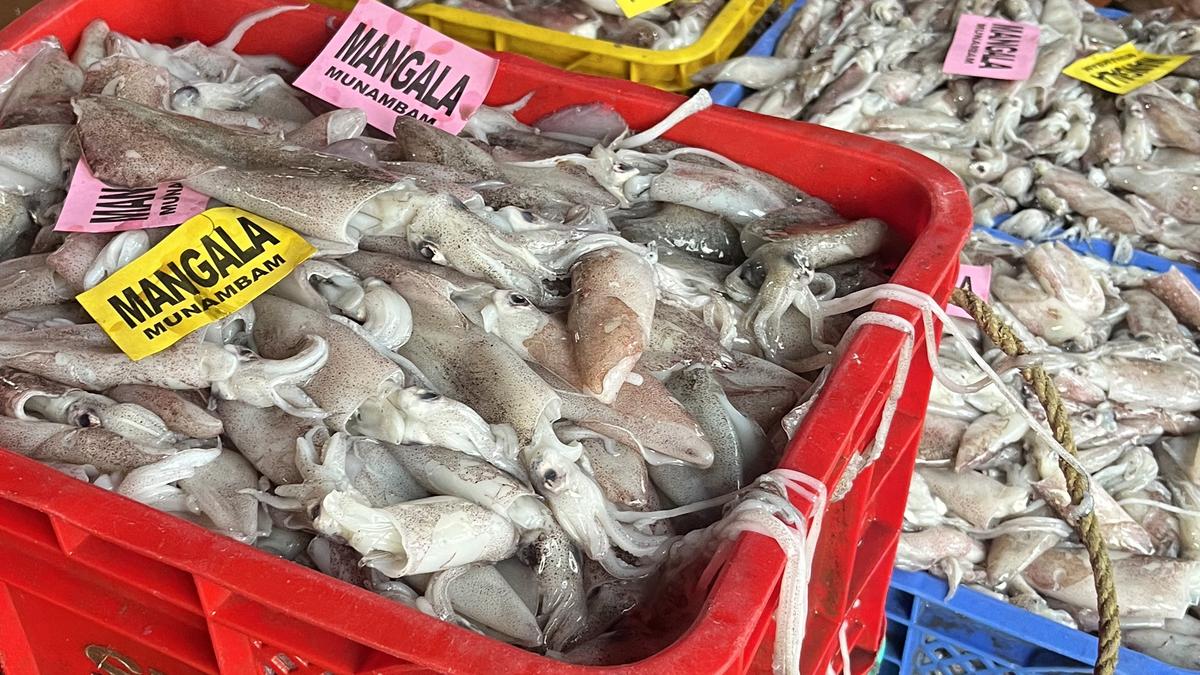
- 29 Jan 2025
In News:
Researchers at the Central Marine Fisheries Research Institute (CMFRI), Kochi, have successfully decoded the gene expression pattern of the Indian squid (Uroteuthis duvaucelii), marking a major scientific advancement with wide-ranging implications for neuroscience, environmental studies, and sustainable marine resource management.
About Indian Squid
- Common Name: Indian Calamari
- Scientific Classification: Cephalopod
- Size: Typically 20–30 cm; can grow up to 50 cm
- Appearance: Light pinkish-grey body with two large fins, eight arms, and two longer tentacles used for capturing prey
- Key Abilities:
- Camouflage
- Jet propulsion for rapid movement
- Advanced nervous system
- Problem-solving skills and behavioral intelligence
Habitat & Distribution
- Preferred Habitat: Coastal and open sea regions of the Indian Ocean
- Found at depths ranging from 100 to 500 meters, some even up to 1,500 meters
- Requires high dissolved oxygen levels for respiration
- Geographic Distribution:
- Widely distributed in the Indo-West Pacific
- Found in Indian Ocean, Red Sea, Arabian Sea, from Mozambique to the South China Sea, Philippine Sea, and northward to Taiwan
- Conservation Status: IUCN Red List: Least Concern
Scientific Significance of Genetic Research
- Key Findings:
- Revealed genetic similarities with higher vertebrates like fish and humans, suggesting deep evolutionary links
- Indicates that Indian squid could serve as a model organism to study brain evolution, intelligence, and neurobiological functions
- Potential to inform research in neural circuits, memory, learning, and even neurological diseases
- Findings may also explain squid's adaptive success, such as evading predators and fishing pressures due to high cognitive ability
Institutional Background: CMFRI
- Established: 1947
- Affiliation: Part of the Indian Council of Agricultural Research (ICAR) since 1967
- Headquarters: Kochi, Kerala
- Mandate: Research on sustainable marine fisheries and ecosystem conservation
CMFRI’s Broader Recommendations for Sustainable Marine Management
- Enactment of Sea Fishing Act to regulate fishing beyond territorial waters
- Institutionalization of ecological stock assessments for sustainable exploitation
- Simplification and promotion of open mariculture with focus on environmental sustainability
- Use of AI-based systems to estimate landings and monitor fishing vessels
- Deep-sea resource exploration and alternative fishing methods
- Institutional mechanism for supervising deep-sea fishing
- Strengthening insurance coverage for marine fishers
RBI Payment System Report 2024

- 29 Jan 2025
In News:
The Payment System Report – December 2024 is a bi-annual publication by the Reserve Bank of India (RBI).
It analyses trends in digital and retail payment systems over the last five calendar years (up to CY-2024) and highlights India's transformation into a global leader in payment innovation and inclusion.
Growth in Digital Transactions
- Exponential Growth: Digital payment transactions rose 94 times in volume (from 222 crore in 2013 to 20,787 crore in 2024) and 3.5 times in value (from ?772 lakh crore to ?2,758 lakh crore).
- Recent CAGR (2019–2024):
- Volume: 45.9% CAGR
- Value: 10.2% CAGR
- Retail Digital Payments: From 162 crore transactions in FY13 to 16,416 crore in FY24 — a 100-fold increase in 12 years.
- Digital Payments Index (DPI): Surged from a base of 100 in March 2018 to 445.50 in March 2024, indicating massive digital adoption.
UPI: A Game-Changer
- Launched in 2016 by NPCI, UPI has revolutionized mobile-based payments.
- CAGR (Last 5 Years):
- Volume: 74.03%
- Value: 68.14%
- Monthly Transactions: UPI processes over 16 billion transactions monthly, ranking among the largest globally.
- Inclusive Innovations:
- UPI Lite & UPI Lite X: For offline/small-value payments.
- UPI123Pay: For feature phone users.
- UPI 2.0: Includes auto-debit and recurring payment functionalities.
Credit and Debit Card Trends
- Credit Cards:
- Growth: More than doubled from 5.53 crore (Dec 2019) to 10.80 crore (Dec 2024).
- Debit Cards:
- Stable Usage: Marginal increase from 80.53 crore to 99.09 crore in the same period.
Cross-Border Payment Integration
- RBI is actively enhancing cross-border payments by integrating India's UPI with international Fast Payment Systems (FPSs), addressing high costs, delays, and limited access.
- Key Developments:
- UPI-PayNow Linkage (Feb 2023): India-Singapore real-time cross-border payments.
- UPI-enabled QR Payments: Available in Bhutan, France, Mauritius, Nepal, Singapore, Sri Lanka, UAE.
- Project Nexus:
- A BIS-conceptualized multilateral project.
- Aims to interlink FPSs of India, Malaysia, Philippines, Singapore, and Thailand for seamless retail payments.
Institutional and Legal Framework
- Legal Backbone: Payments and Settlement Systems Act, 2007 (PSS Act) empowers RBI to:
- Regulate, supervise, and license payment system operators.
- Authorize systems like NPCI, card networks, ATM operators, etc.
- Governing Body:
- Board for Regulation and Supervision of Payment and Settlement Systems (BPSS) under RBI.
- Chairperson: RBI Governor; Vice-Chairperson: Deputy Governor (in charge of DPSS).
- Payment Ecosystem Entities:
- RBI-regulated: RTGS, NEFT, Cheques (CTS).
- NPCI-managed: UPI, IMPS, AePS, BBPS, NETC, NACH, Cards.
- Other PSOs: TReDS, PPIs.
Strategic Significance
- Financial Inclusion: Payment systems are critical tools for promoting inclusive growth by ensuring last-mile delivery of services and direct benefit transfers.
- Global Competitiveness: RBI’s regulatory foresight and innovation have placed India among the global frontrunners in digital payments.
Libia Lobo Sardesai
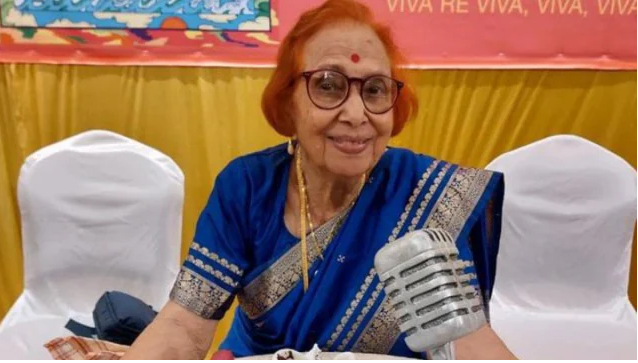
- 28 Jan 2025
In News:
In 2024, at the age of 100, Libia Lobo Sardesai was awarded the Padma Shri for her pivotal role in Goa’s liberation struggle from Portuguese colonial rule.
About Libia Lobo Sardesai
- Born: 25 May 1924, in Portuguese-ruled Goa; raised in Mumbai.
- Profession: Freedom fighter, broadcaster, and Goa’s first Director of Tourism post-liberation.
- Legacy: Symbol of courage and resistance, known as the “voice of Goa’s liberation.”
Role in Goa’s Liberation Movement
- Involvement: Joined the Goan nationalist movement during her college years.
- Underground Radio:
- From 1955 to 1961, Libia, along with her husband Vaman Sardesai and Nicolau Menezes, ran an underground radio station – initially called ‘Q’, later named:
- Goenche Sodvonecho Awaz (Voice of Freedom of Goa) – Konkani
- Voz de Liberdade – Portuguese
- Operated from Amboli (Maharashtra) and Castle Rock (Karnataka) in the Western Ghats.
- Purpose: Counter Portuguese censorship and propaganda; broadcast news, updates, and morale-boosting messages to Goans.
- From 1955 to 1961, Libia, along with her husband Vaman Sardesai and Nicolau Menezes, ran an underground radio station – initially called ‘Q’, later named:
- Final Broadcast:
- On 19 December 1961, Libia flew over Panaji in an IAF plane, announcing Goa’s liberation with the message:
“Rejoice brothers and sisters, Rejoice! Today, after 451 years of alien rule, Goa is free and united with the Motherland.”
Goa Liberation Movement: Background
- Colonial Rule: Goa was under Portuguese rule for over 451 years (from 1510 to 1961).
- Key Phases:
- 1954: India imposed an economic blockade after Portuguese crackdown on satyagrahis.
- August 1955: Mass satyagraha met with violent repression by Portuguese forces.
- Censorship: Portuguese regime enforced total censorship; only official Portuguese narratives were allowed.
- 1961 – Operation Vijay:
- Initiated on 17 December 1961 by the Indian Army under Lt. Gen. J.N. Chaudhuri.
- Portuguese forces surrendered by 19 December 1961, marking Goa’s official liberation.
Notable Leaders of the Movement
- Dr. Ram Manohar Lohia: Sparked initial resistance against Portuguese rule.
- Libia Lobo Sardesai: Voice of the resistance via underground broadcasting.
- Lt. Gen. J.N. Chaudhuri: Led military operations during Operation Vijay.
Significance
- Libia Lobo Sardesai represents the unsung contributions of civil resistance and communication warfare in India’s decolonization.
- Her work sustained nationalist morale, informed citizens under censorship, and shaped the narrative of a liberated Goa.
Aero India 2025
- 28 Jan 2025
In News:
Aero India 2025, the 15th edition of India’s premier aerospace and defence exhibition, is scheduled from February 10–14, 2025, at the Yelahanka Air Force Station, Bengaluru.
Organised by the Ministry of Defence and the Defence Exhibition Organisation (DEO), the event continues to be a vital forum for promoting India's indigenous defence capabilities and fostering international collaboration.
Evolution of Aero India: From Showcase to Strategic Asset
- Inception (1996): Launched as a modest exhibition to attract foreign investments and highlight India’s aerospace potential.
- Growth Phase (2005–2015): Marked by the entry of global giants like Boeing, Airbus, Lockheed Martin, and Dassault Aviation. Indigenous platforms like LCA Tejas began gaining prominence.
- Current Phase (2015–Present): Aligned with ‘Make in India’ and ‘Aatmanirbhar Bharat’, Aero India has become a symbol of India's defence self-reliance and a magnet for global partnerships.
Aero India 2025 Highlights
1. International Participation and Strategic Displays
- Participation from 15+ countries and major OEMs.
- Russia’s Su-57 and USA’s F-35—two of the world’s most advanced 5th-generation fighters—will be showcased together, reflecting India’s growing strategic importance.
- Other prominent platforms: KC-135 Stratotanker, Embraer C-390, and Light Combat Helicopter Prachand.
2. Indigenous Innovation
- Advanced Medium Combat Aircraft (AMCA): India’s 5th-generation stealth fighter, developed by HAL and ADA, will be unveiled.
- Indigenous platforms like LCA Mk2, LUH, HTT-40, ALH, and Naval Twin-Engine Deck-Based Fighter will also be featured.
3. Start-Up Integration via 'Manthan'
- Through the iDEX initiative, Aero India is promoting start-ups working in AI, unmanned systems, cybersecurity, and electronic warfare.
- Start-ups will showcase innovations including jetpack suits, robotics, and defence software tools.
4. Business & Public Engagement
- Business Days: February 10–12, 2025
- Public Days: February 13–14, 2025
- Over 7 lakh visitors expected; the event offers aerial displays, seminars, tech expos, and networking forums.
5. Defence Diplomacy and Deals
- Aero India 2023 had seen over ?80,000 crore worth of MoUs. A similar or higher scale of defence agreements is expected in 2025.
- High-level participation from defence ministers, air chiefs, and CEOs of OEMs, signalling deepening international defence cooperation.
Strategic Significance for India
- Geopolitical Leverage: Participation of both US and Russian defence firms signals India’s strategic autonomy and balanced defence diplomacy.
- Self-Reliance Boost: The event enhances domestic manufacturing by integrating MSMEs, promoting co-development and co-production with foreign partners.
- Global Recognition: Positions India as an emerging aerospace hub in the Indo-Pacific.
- Technological Edge: Demonstrates advancements in stealth technology, avionics, and unmanned systems.
Theme of Aero India 2025: “The Runway to a Billion Opportunities” — highlighting India’s expanding defence manufacturing capabilities and its aim to integrate with the global supply chain.
Uniform Civil Code (UCC) in Uttarakhand

- 28 Jan 2025
In News:
On January 27, 2025, Uttarakhand became the first Indian state to formally implement the Uniform Civil Code (UCC) after Independence. The legislation was passed by the State Assembly on February 7, 2024, and received Presidential assent on March 12, 2024.
Historical Background:
- A five-member expert committee chaired by Justice (Retd.) Ranjana Prakash Desai was constituted to draft the UCC report.
- The committee submitted its report on October 18, 2023.
- Though initially scheduled for implementation by November 9, 2024 (Uttarakhand's Foundation Day), the rollout was delayed due to administrative preparedness and staff training.
Scope and Applicability:
- Applicable to all residents of Uttarakhand, including those in live-in relationships outside the state.
- Scheduled Tribes (as per Article 342) and migrated natives have been exempted to safeguard cultural rights.
Key Provisions of the UCC:
1. Marriage, Divorce & Live-in Relationships
- Legal marriage age: 21 years (men), 18 years (women).
- Mandatory registration of marriages, divorces, and live-in relationships.
- Prohibited practices: Triple talaq, halala, iddat, polygamy, and child marriage.
- Live-in Relationships:
- Mandatory registration for couples aged 21 and above.
- Parental consent required if under 21.
- Termination of live-in relationships requires mutual consent.
- Mandatory reporting of pregnancy within 30 days of childbirth.
- Landlords cannot deny housing to registered live-in couples.
2. Inheritance & Property Rights
- Equal inheritance rights for sons and daughters.
- Children born to live-in couples recognized as legitimate, eligible for inheritance.
3. Wills and Succession
- Wills can be:
- Submitted online.
- Uploaded as handwritten/typed documents.
- Recorded as a 3-minute video.
Digital Infrastructure – UCC Portal (ucc.uk.gov.in):
- Aadhaar-based verification for authenticity.
- AI-based multilingual translation in 22 Indian languages.
- Tatkal service for expedited registrations with a nominal fee.
- Integrated with 13+ departments, including police, civic bodies, and courts.
- Disaster recovery systems and cloud-based architecture ensure secure data management.
- Access to:
- Online registration of marriages, divorces, live-in relationships.
- Upload and registration of wills.
- Grievance redressal and appeal mechanisms.
Administrative Framework:
- Village Panchayat Development Officers appointed as sub-registrars in rural areas.
- Common Service Centres (CSCs) enabled to facilitate registration, especially in remote and mountainous areas.
- Registration applications processed within 15 days, or 3 days in emergencies.
- Appeals must be filed within 30 days of rejection, resolved within 60 days.
Penalties:
- Initial warnings for non-compliance.
- Fines imposed for repeated violations.
Significance:
- The UCC aims to promote gender equality, legal uniformity, and women's empowerment.
- Represents a constitutional vision under Article 44, reinforcing the idea of a common civil law for all citizens.
- Seen as a potential model for other states in India.
Himachal Pradesh: Statehood Day
- 28 Jan 2025
In News:
The Prime Minister greeted the people of Himachal Pradesh (HP) on the occasion of Statehood Day (25th January).
Key Highlights:
Statehood Day: Celebrated annually on 25th January, marking the day Himachal Pradesh attained full statehood in 1971.
Historical Timeline:
- 15 April 1948: Formation of Chief Commissioner’s Province of Himachal Pradesh through the merger of 30 princely hill states.
- 26 January 1950: Became a Part C State with the commencement of the Indian Constitution. (Part C states comprised former Chief Commissioner’s provinces and some princely states.)
- 1 November 1956: Reconstituted as a Union Territory based on the recommendations of the States Reorganisation Commission.
- 1 November 1966: Kangra district and other hilly areas of Punjab merged into Himachal Pradesh, yet it remained a Union Territory.
- 18 December 1970: The State of Himachal Pradesh Act was passed by Parliament.
- 25 January 1971: Himachal Pradesh became the 18th state of the Indian Union.
Jawaharlal Nehru Port Authority

- 28 Jan 2025
In News:
The Jawaharlal Nehru Port Authority (JNPA) in Mumbai is set to become India’s first port to enter top global ports with 10 million TEUs (twenty-foot equivalent units) by 2027.
Overview:
- Location: Navi Mumbai, Maharashtra
- Commissioned: 1989
- Significance: India’s first Landlord Major Port, fully adopting the landlord port model.
Performance & Capacity Expansion:
- In 2024, JNPA handled a record 7.05 million TEUs, operating at over 90% capacity, with an 11% year-on-year growth.
- By 2027, JNPA is projected to become India’s first port to handle 10 million TEUs annually, marking its entry into the global top ports list.
- Current container handling capacity: 7.6 million TEUs
- Projected capacity by 2027: 10.4 million TEUs
Infrastructure Developments:
- Commissioning of Phase II of Bharat Mumbai Container Terminal (BMCT) to add 2.4 million TEUs.
- Upgradation of Nhava Sheva Freeport Terminal expected in 2025.
- Five operational container terminals, including:
- BMCT
- Nhava Sheva International Container Terminal (NSICT)
- Gateway Terminals India Pvt Ltd (GTIPL)
Key Projects & Investments (2024):
- ?2,000 crore worth of capacity enhancement projects launched.
- Solar-powered boat, two indigenously developed 70T tugs, and three fire tenders commissioned for safety and efficiency.
- Agro-processing facility (?284 crore) on 27 acres within port complex to handle 1.2 million tonnes annually – includes processing, sorting, packing, and food safety labs.
- Warehousing and CFS infrastructure (?300 crore investment) to generate 1,20,000 TEUs/year through ambient and temperature-controlled facilities.
Vadhavan Port Project:
- Proposed as India’s 13th major port (under construction).
- MoU with Reliance Industries Ltd: Development of liquid jetty and 50 acres of land under PPP model (investment: ?645 crore; operational by 2030).
- MoU with DBKKVD Dapoli: For integrated agri-horticultural development in Dahanu and Palghar.
- MoU with HUDCO: Funding commitment of ?25,000 crore for port infrastructure under PPP mode.
Strategic Importance:
- JNPA is central to India’s maritime trade, which accounts for 95% of trade by volume and 70% by value.
- Satellite and dry ports at Vadhavan, Jalna, and Wardha to improve hinterland connectivity and trade logistics.
Paraquat Poisoning
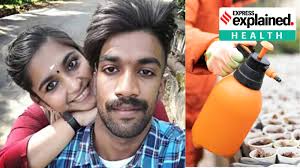
- 27 Jan 2025
In News:
- In a landmark ruling, a Thiruvananthapuram court sentenced a 24-year-old woman to death for the murder of her boyfriend by poisoning him with paraquat, a highly toxic herbicide.
- The incident, which occurred in 2022, has brought the spotlight back on paraquat's widespread availability, extreme toxicity, and the lack of regulatory enforcement in India.
What is Paraquat?
- Paraquat, chemically known as paraquat dichloride or methyl viologen, is one of the most widely used herbicides globally.
- It is primarily used for:
- Weed control
- Crop desiccation, especially in crops like cotton before harvest
- Despite its toxicity, India and the United States continue to permit its usage, unlike over 70 countries, including China, Brazil, and the European Union, which have banned it.
WHO Classification
- The World Health Organization (WHO) classifies paraquat as a Category 2 chemical, meaning it is moderately hazardous and irritating to the skin and eyes.
- It has a narrow margin between a safe and lethal dose, making accidental or intentional poisoning common and often fatal.
Routes and Effects of Exposure
- Ingestion is the most common method of poisoning.
- It may also occur through inhalation or skin contact, especially if the exposure is prolonged or the skin is broken.
Symptoms Vary by Dosage and Exposure Time:
Exposure Level Symptoms and Organ Damage
Small Quantity Gradual damage to lungs, liver, kidneys, and heart over days/weeks
Large Quantity Immediate symptoms such as:
- Acute kidney failure
- Liver and heart failure
- Seizures
- Respiratory failure
- Severe abdominal pain
- Bloody diarrhea
- Nausea
- Mouth and throat swelling |
Treatment and Challenges
- No known antidote exists for paraquat poisoning.
- Treatment options include:
- Immunosuppressive therapy
- Charcoal hemoperfusion (a blood-purification technique)
- However, these treatments offer limited efficacy, especially in cases of large-dose ingestion.
Regulatory and Public Health Implications in India
- Despite paraquat’s well-documented toxicity, it remains:
- Legally available in India
- Easily accessible in rural markets
- The lack of regulation increases the risks of:
- Occupational exposure
- Accidental poisoning
- Use in crimes or suicides
Whip System in Indian Parliament
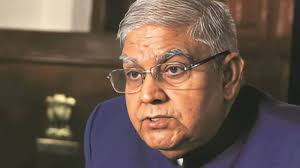
- 27 Jan 2025
In News:
Vice President Jagdeep Dhankhar recently criticized the party whip system, arguing that it curtails the freedom of expression of Members of Parliament (MPs) and enforces servility by mandating strict adherence to the party line. His remarks have sparked a renewed debate on the balance between party discipline and individual autonomy in a parliamentary democracy.
What is a Party Whip?
A whip in parliamentary parlance is both a directive and a designated official of a political party. The directive instructs legislators on voting behavior on specific issues such as bills, motions, or resolutions. The designated whip ensures attendance, adherence, and discipline within the party ranks.
- The term “whip” originated from England’s hunting tradition, where a “whipper-in” kept hounds within the pack.
- The political usage dates back to Edmund Burke in the British Parliament.
- In India, the whip system has been in place since the start of parliamentary governance.
Constitutional and Legal Framework
- The whip system is not mentioned in the Constitution, Rules of Procedure, or any statute, but functions through parliamentary conventions.
- The Anti-Defection Law (52nd Amendment, 1985) enforces the whip by allowing disqualification of MPs/MLAs for defying it, thus preserving political stability and party integrity.
Quorum Requirement: As per Article 100 of the Constitution, quorum in Parliament is one-tenth of the total membership:
- Lok Sabha: 55 members
- Rajya Sabha: 25 members
Types of Whips
- One-Line Whip: Informational—members may abstain.
- Two-Line Whip: Requires presence but does not dictate voting.
- Three-Line Whip: Strictest—mandates attendance and voting as directed.
- Violation can lead to disqualification under the Anti-Defection Law, unless two-thirds of the party members dissent together.
Functions and Significance
- Ensures Attendance: Maintains quorum during critical votes.
- Secures Support: Helps pass or oppose legislation.
- Maintains Discipline: Prevents cross-voting or defection.
- Internal Monitoring: Identifies discontent among MPs and informs party leadership.
- Party Cohesion: Acts as a channel between MPs and party high command.
- Democratic Functioning: Ensures government stability, especially during division voting, where numbers decide the fate of motions like the No-Confidence Motion.
For ruling coalitions, a united stance during such votes is crucial to showcase majority strength.
Chief Whip and Institutional Structure
- The Chief Whip is the most critical functionary in enforcing the whip.
- In the Lok Sabha, the Minister of Parliamentary Affairs usually acts as the government’s chief whip.
- In the Rajya Sabha, it is the Minister of State for Parliamentary Affairs.
- Whips also coordinate which MPs speak, when, and on what issues.
The All-India Whips Conference, held since 1952, allows whips from all parties to discuss coordination strategies and share parliamentary practices.
Criticism and Contemporary Debate
- Critics, including the Vice President, argue that whips limit deliberative democracy, reduce MPs to mere rubber stamps, and suppress individual judgment.
- However, supporters claim that whips are essential to prevent chaos, ensure smooth functioning, and uphold mandated party ideologies, especially in a system where governments often hinge on narrow majorities.
Former Lok Sabha Speaker Sumitra Mahajan defended the whip, stating that MPs elected on a party ticket must uphold the party’s collective ideology and decisions, even if personal disagreement exists.
India’s Journey of Fiscal Consolidation
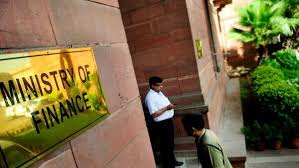
- 27 Jan 2025
In News:
Fiscal Consolidation refers to the strategic management of government finances aimed at reducing fiscal deficits, controlling public debt, and ensuring macroeconomic stability. India’s recent journey in this regard has been marked by a significant transformation, particularly in the post-2014 era.
Background:
In 2013-14, India was labelled as one of the "Fragile Five", largely due to its ballooning fiscal deficit (touching 5% of GDP in a quarter), high inflation, and weakening currency. This tag underscored the urgency of restoring fiscal health.
Post-2014 Measures:
- FRBM Act Revamp: The government recommitted to the Fiscal Responsibility and Budget Management (FRBM) Act, 2003, revising fiscal targets and focusing on fiscal discipline.
- Deficit Reduction: Fiscal deficit was reduced from 4.5% of GDP in FY 2013-14 to 3.4% in FY 2018-19.
- Revenue Boost: Digitization and broader tax reforms helped increase tax receipts from 10% of GDP (FY 2014-15) to 11.8% (FY 2023-24).
- Capex Focus: Capital expenditure nearly doubled from 1.6% of GDP in FY 2014-15 to 3.2% in FY 2023-24, emphasizing infrastructure over consumption.
Pandemic Impact and Recovery:
- During COVID-19, India’s fiscal deficit soared to 9.2% of GDP (FY 2020-21) due to emergency spending.
- Unlike blanket stimulus in some countries, India opted for targeted support (MSMEs, displaced populations, healthcare) while continuing infrastructure investment.
- This strategy avoided long-term inflationary pressure and built long-term productive capacity.
Structural Reforms:
- Production Linked Incentive (PLI) schemes aimed at reducing import dependence and boosting domestic manufacturing.
- Enhanced export competitiveness due to fiscal prudence and macroeconomic stability.
Current Scenario:
- Fiscal deficit reduced to 5.6% of GDP in FY 2023-24, with a target of 4.9% in FY 2024-25, and further narrowing to 4.5% by FY 2025-26.
- States remain a concern: their deficits exceed the 3% of GSDP limit, averaging 3.2% in FY 2023-24, with rising debt levels and declining capex.
FRBM Act & N.K. Singh Committee:
- FRBM Act (2003) aims to cap the fiscal deficit at 3% of GDP.
- The N.K. Singh Committee (2016) recommended:
- Shift from rigid deficit targets to debt as the primary anchor.
- Set up an autonomous Fiscal Council.
- Flexibility via an “escape clause” (up to 0.5% extra deficit during crises).
- Limit borrowings from RBI to specific emergency conditions.
Significance of Fiscal Consolidation:
- Macroeconomic Stability: Controls inflation and keeps currency stable.
- Investment Magnet: Low deficits improve investor confidence.
- Reduced Debt Burden: Less borrowing means less stress on future generations.
- Efficient Governance: Ensures better resource allocation and economic resilience.
Chronic Pulmonary Aspergillosis (CPA)
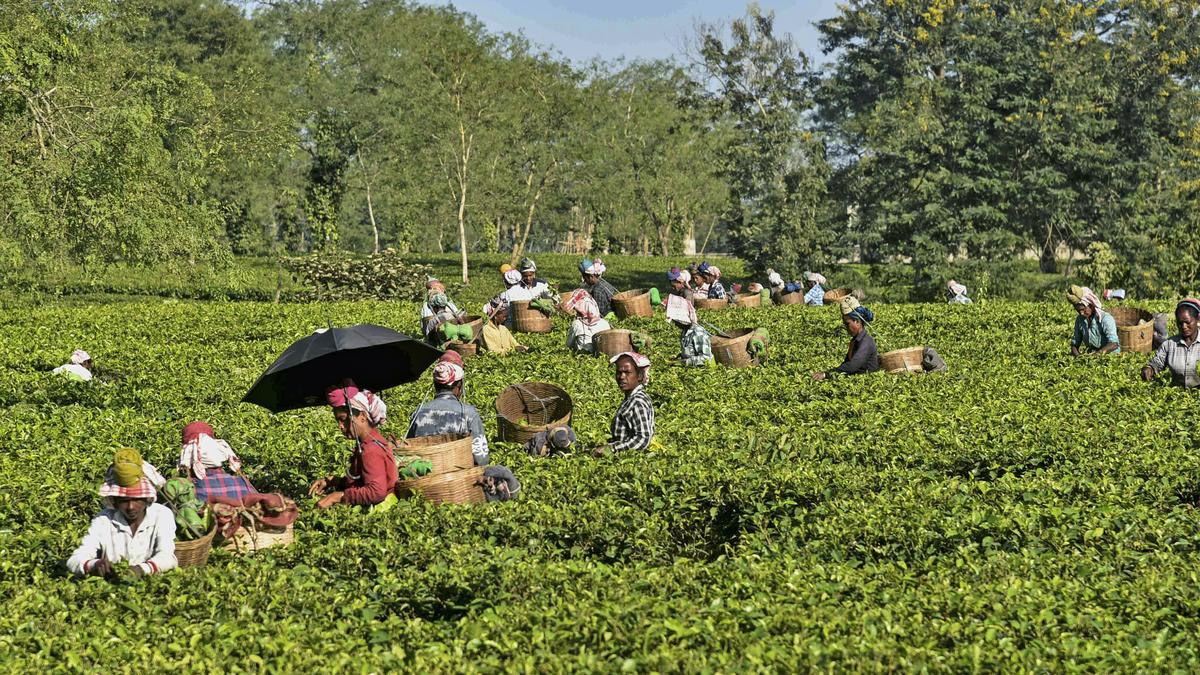
- 27 Jan 2025
In News:
A recent study conducted by Assam Medical College and Hospital has revealed a high prevalence of Chronic Pulmonary Aspergillosis (CPA) among tuberculosis (TB) survivors in Assam’s tea garden communities. Published in the PLOS Neglected Tropical Diseases journal, the research underscores a significant public health concern in a region already burdened by TB.
What is Chronic Pulmonary Aspergillosis (CPA)?
- CPA is a severe, life-threatening fungal infection caused by Aspergillus fumigatus, a filamentous fungus commonly found in soil, decaying vegetation, and humid organic matter.
- It predominantly affects individuals with weakened immune systems or pre-existing lung conditions, especially those who have recovered from or are currently battling TB.
- CPA is not contagious and cannot be transmitted from person to person.
Symptoms and Clinical Presentation:
CPA shares many clinical features with TB, making diagnosis challenging:
- Chronic cough
- Haemoptysis (coughing up blood)
- Persistent respiratory symptoms
- Weight loss
- Fatigue
- Shortness of breath
- Wheezing
Key Findings from Assam:
- Study Area: Conducted in Dibrugarh district, covering tea workers and their dependents from four major tea estates.
- Sample Size: 128 patients with prolonged respiratory symptoms (>3 months).
- Prevalence:
- CPA prevalence: 17.18% overall
- Seropositivity in active TB patients: 18.5%
- Seropositivity in post-TB patients: Spiked to 48.9%, indicating a strong link between CPA and previous TB infections.
- Demographic Insights:
- Mean age: 41.9 years
- Higher incidence among middle-aged male workers
- Comparison with Global Trends:
- Assam’s CPA prevalence (60 per 1,00,000) exceeds the global average (42 per 1,00,000)
- Worse than several African nations including Nigeria and the Democratic Republic of Congo (20–50 per 1,00,000)
Contributing Risk Factors in Assam’s Tea Belt:
- High TB burden: 217 per 1,00,000 (National TB Prevalence Survey 2019–2021)
- Poverty and malnutrition
- Kitchen smoke exposure
- Congested living conditions
- Delayed or inadequate TB treatment
Diagnosis and Treatment:
- Diagnosis:
- Serological testing for Aspergillus antibodies
- Radiological imaging to identify fungal growth in lung cavities
- Treatment:
- Antifungal therapy (e.g., itraconazole or voriconazole)
- Surgical removal in severe cases with fungal mass
Public Health Recommendations:
- Routine screening of post-TB patients for CPA in high-risk zones like tea estates
- Awareness campaigns targeting healthcare providers and workers to improve recognition and response
- Education on nutrition, respiratory hygiene, and early symptom detection
- Inclusion of fungal diseases like CPA in broader national TB and occupational health programs
Additional Context: Epidemic Dropsy in Assam’s Tea Belt
- A 2019 study had previously flagged the prevalence of epidemic dropsy, a condition caused by contaminated edible oils with Argemone mexicana oil, adding to the health risks in tea-growing regions.
Unified Pension Scheme (UPS)
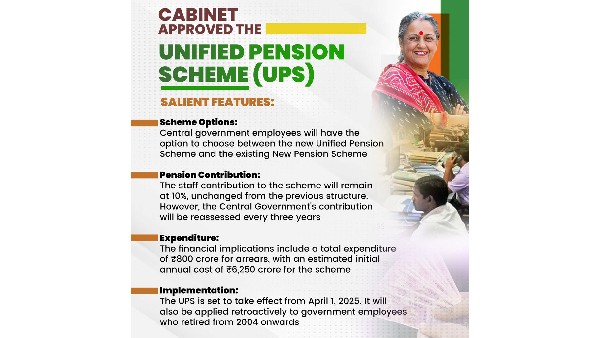
- 27 Jan 2025
In News:
The Ministry of Finance has notified the Unified Pension Scheme (UPS) as an option under the National Pension System (NPS) for Central Government employees, effective April 1, 2025. This reform addresses long-standing concerns about the unpredictability of pension returns under the NPS.
Key Highlights:
- Applicability: Applies to Central Government employees currently under the NPS, including those recruited on or after January 1, 2004, who opt for the UPS.
- Objective: To provide guaranteed post-retirement financial security, addressing grievances regarding the market-linked returns of the NPS.
- Regulatory Framework: The scheme will be regulated by the Pension Fund Regulatory and Development Authority (PFRDA), which will issue detailed operational guidelines.
Pension and Benefit Structure
- Guaranteed Monthly Pension:
- 50% of the average basic pay drawn in the last 12 months prior to retirement.
- Requires completion of 25 years of service.
- Those with 10–25 years of service will receive a proportionate pension.
- Dearness Relief (DR): Periodic adjustments based on inflation trends to maintain pension value.
- Family Pension: In case of death, 60% of the employee's pension will be paid to eligible family members.
- Minimum Pension: Assured ?10,000 per month for those completing at least 10 years of service.
- Superannuation Benefits: Includes a lump sum payout and gratuity at retirement.
Contribution Mechanism
- Employee Contribution: 10% of basic pay.
- Government Contribution: 5% of basic pay (subject to revision based on actuarial evaluations).
Background and Policy Evolution
- The Union Cabinet approved the UPS on August 24, 2024, benefiting nearly 2.3 million Central Government employees.
- The move followed demands from staff unions for guaranteed pensions, and political pressure after several states reverted to the Old Pension Scheme (OPS).
- A high-level committee, led by T.V. Somanathan (then Finance Secretary), was formed in April 2023 to review the NPS framework and design an equitable alternative.
ISRO’s NVS-02 Satellite Launch

- 25 Jan 2025
In News:
ISRO successfully launched the NVS-02 satellite aboard GSLV-F15, placing it into a Geosynchronous Transfer Orbit (GTO). This marks ISRO’s 100th mission, reinforcing India’s space and navigation capabilities under the NavIC (Navigation with Indian Constellation) program.
What is NavIC?
- NavIC is India’s indigenous regional satellite navigation system, developed for both civilian and strategic use.
- Offers accurate positioning over India and up to 1,500 km beyond its borders.
- Comparable to GPS (USA), GLONASS (Russia), Galileo (EU), and BeiDou (China).
About NVS-02 Satellite:
Feature Description
Series Second satellite in the next-gen NVS series (after NVS-01 in 2023)
Mission Role Replaces aging IRNSS-1E satellite
Mass 2,250 kg
Power Capacity ~3 kW
Orbit Final orbital slot at 111.75°E in geosynchronous orbit (~36,000 km)
Life Span 12 years
Developed by URSC (U R Rao Satellite Centre), Bengaluru
Technological Advancements:
- Equipped with navigation payloads across L1, L5, and S-bands for enhanced accuracy and broader coverage.
- Features the Rubidium Atomic Frequency Standard (RAFS) – an indigenously developed atomic clock for precision timekeeping.
- Includes C-band ranging payload, similar to NVS-01.
Significance of NVS-02:
- Enhances NavIC’s positioning accuracy for civilian, commercial, and strategic applications:
- Disaster management
- Fleet tracking
- Precision agriculture
- Emergency response
- Mobile navigation
- L1 signal inclusion makes NavIC-compatible with international GNSS systems, improving global device integration.
- Demonstrates India’s technological self-reliance, particularly in atomic clock development.
ISRO’s Launch Vehicles
Vehicle First Flight Notable Use
SLV 1980 Launched Rohini satellite
ASLV 1987 Five-stage solid rocket, retired in 1990s
PSLV 1994 Reliable, used for Mars Orbiter, LEO missions
GSLV 2001 Used for heavier payloads, INSAT/GSAT
GSLV 2014 Heavy-lift, Chandrayaan-2/3, Gaganyaan crew module
Mk III (LVM3)
SSLV 2022 Affordable launches for nano/micro satellites
PKC-ERCP: Rajasthan’s River-Linking Project

- 25 Jan 2025
In News:
The Parbati-Kalisindh-Chambal-Eastern Rajasthan Canal Project (PKC-ERCP), part of the National Interlinking of Rivers (ILR) programme, aims to address water scarcity in 23 districts of Rajasthan, potentially benefiting 3.45 crore people. However, it has raised serious concerns over its ecological impact, particularly on the Ranthambore Tiger Reserve.
About the PKC-ERCP Project:
Aspect Details
Objective To channel surplus water from the Chambal basin for irrigation, drinking, and industrial use in Rajasthan and Madhya Pradesh
Estimated Cost ?72,000 crore (90% funded by the Central Government)
Water Allocation 4,100 MCM to Rajasthan and 3,000 MCM to Madhya Pradesh
Rivers Involved Chambal, Parbati, Kalisindh, Banas, and tributaries
Major Structure 39 m high, 1.6 km long dam across the Banas River, a Chambal tributary, near Doongri village, ~30 km from Sawai Madhopur
Submergence and Environmental Concerns:
- Total Submergence: ~408.86 sq km in Rajasthan.
- Reservoir Impact: 227 sq km to be submerged under the proposed dam across Banas River.
- Impact on Tiger Reserve:
- 37.03 sq km of the Ranthambore Tiger Reserve (total area: 1,133 sq km) to be submerged.
- This includes parts of Ranthambore National Park (392 sq km) and Keladevi Wildlife Sanctuary (674 sq km).
- May fragment the reserve, disrupting wildlife corridors and tiger movement.
- Ranthambore’s Significance:
- Home to ~57 tigers, it is one of India’s most prominent conservation areas.
- Situated at the Aravalli-Vindhya junction, with rich biodiversity, including leopards, hyenas, sloth bears, and iconic flora like Dhok trees.
- Encompasses the UNESCO-listed Ranthambore Fort and the Great Boundary Fault.
Arguments For the Project:
- Addresses chronic water scarcity in eastern Rajasthan.
- Promotes agricultural productivity, drinking water security, and industrial development.
- Aims to optimize water use by diverting surplus flows.
Arguments Against the Project:
- Biodiversity loss due to habitat submergence and reserve fragmentation.
- Risks to tiger conservation efforts.
- Potential violation of environmental safeguards under the Wildlife Protection Act and Forest Conservation norms.
Long-term ecological costs may outweigh short-term developmental gains.
SEBI’s Sachetisation of Mutual Funds
- 25 Jan 2025
In News:
In January 2025, the Securities and Exchange Board of India (SEBI) proposed the “sachetisation” of mutual fund investments to promote financial inclusion, especially among low-income and first-time investors.
What is Sachetisation?
- Originating from the FMCG sector (e.g., shampoo sachets), sachetisation refers to offering financial products in small, affordable units, enhancing accessibility and affordability.
- In capital markets, it implies micro-level investment options, particularly through low-ticket SIPs (Systematic Investment Plans).
Objectives:
- Promote financial inclusion and empower economically underserved sections.
- Expand mutual fund penetration to semi-urban and rural areas.
- Encourage long-term savings and wealth creation among new investors.
- Reduce dependency on large institutional or foreign investors by broadening the domestic retail base.
Key Features of SEBI’s Sachet SIP Proposal:
Feature Details
Minimum SIP Amount ?250 per month
Eligibility Only for new mutual fund investors
Investment Limit Up to 3 sachet SIPs across different AMCs
Excluded Schemes Debt funds, sectoral/thematic, small-cap, mid-cap equity funds (due to higher risk)
Commitment Period Encouraged to commit for 5 years (60 SIPs), but premature withdrawal allowed
Payment Modes Only via auto-pay mechanisms such as UPI Autopay and NACH
Cost Incentives AMCs to receive subsidies from SEBI’s Investor Education and Awareness Fund
Distributor Incentive ?500 per investor after completion of 24 monthly SIPs
Significance:
- Democratizes investment access by lowering the entry barrier for mutual funds.
- Encourages behavioral shift towards long-term financial planning and discipline.
- Stabilizes domestic markets by broadening and diversifying the retail investor base.
Supports SEBI’s vision of making capital markets inclusive, tech-enabled, and accessible.
Fiscal Health Index (FHI) 2025
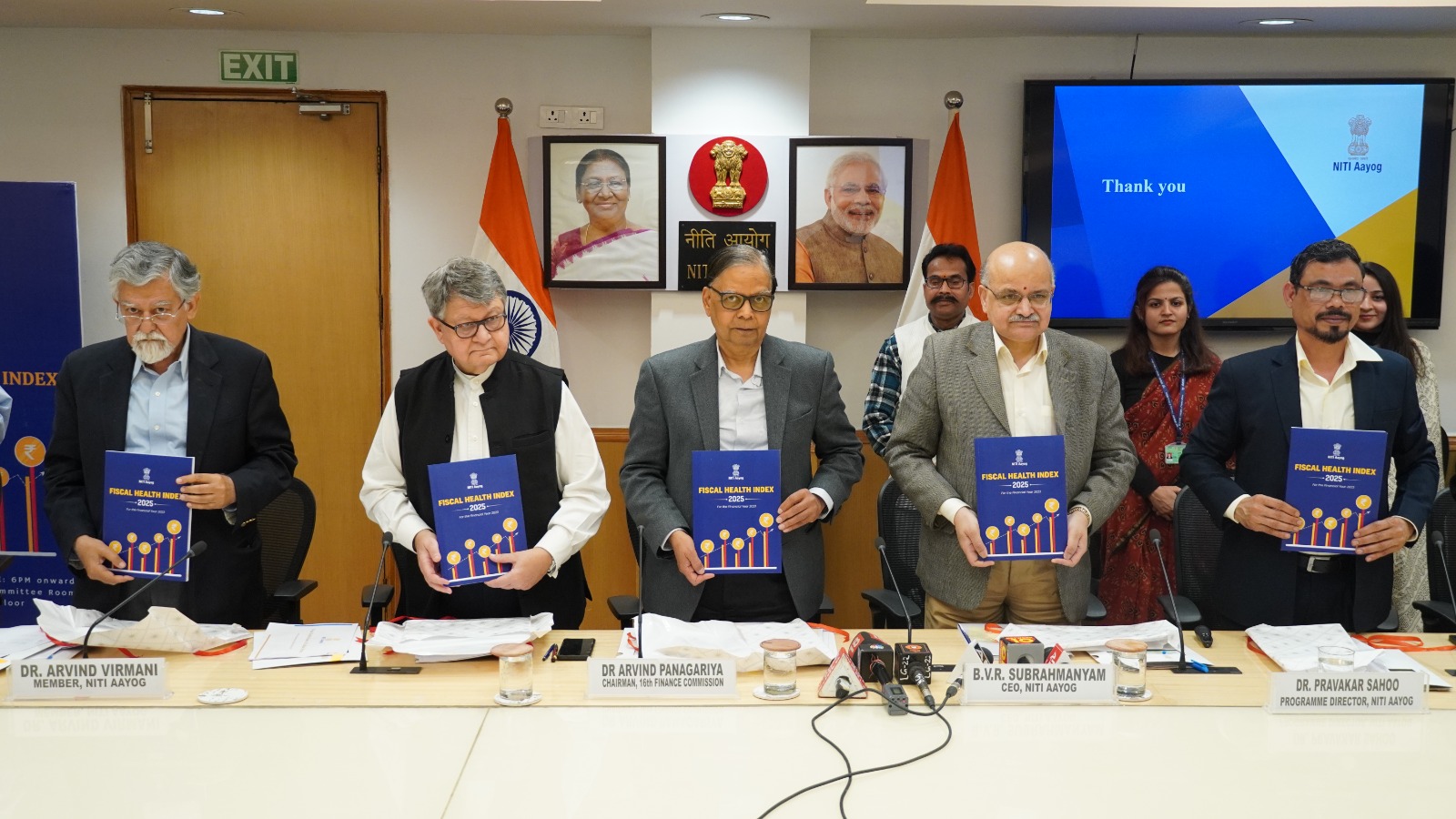
- 25 Jan 2025
In News:
NITI Aayog launched the inaugural Fiscal Health Index (FHI) 2025 on 24 January 2025 in the presence of the 16th Finance Commission Chairman, Dr. Arvind Panagariya. The index evaluates the fiscal performance of 18 major Indian states using FY 2022–23 as the base year.
Key Highlights:
- Objective: To assess, monitor, and improve the fiscal health of Indian states and foster balanced regional development, economic resilience, and fiscal transparency. It aims to support the national goal of Viksit Bharat @2047.
- Developed by:
- NITI Aayog, with data sourced from the Comptroller and Auditor General (CAG).
- Designed as an annual publication to promote informed and targeted state-level policy reforms.
- Evaluation Parameters:
The index comprises five sub-indices that collectively offer a holistic picture of fiscal health:
- Quality of Expenditure – Efficiency in developmental and social sector spending (e.g., health, education).
- Revenue Mobilization – Tax and non-tax revenue generation capacity.
- Fiscal Prudence – Adherence to fiscal deficit targets and sound financial management.
- Debt Index – Absolute level of public debt.
- Debt Sustainability – Debt-to-GSDP ratio and interest burden on revenues.
Key Highlights from FHI 2025:
Top Performing States (Achievers):
Rank State FHI Score Strengths
1. Odisha 67.8 Low fiscal deficit, strong debt management, effective capital expenditure
2. Chhattisgarh 55.2 Revenue growth from mining, fiscal prudence
3. Goa 53.6 High tax efficiency and non-tax revenue
Aspirational States (Facing Challenges):
- Punjab, West Bengal, Kerala, Andhra Pradesh
- Issues: High debt-to-GSDP ratios, revenue deficits, poor revenue mobilization
Sub-Index Insights:
- Revenue Mobilization: Odisha, Goa, and Chhattisgarh excelled; Bihar and West Bengal lagged due to low own-tax revenues.
- Quality of Expenditure: Madhya Pradesh and Chhattisgarh prioritized social sectors; Punjab and Rajasthan underperformed in capital investment.
- Debt Management: Maharashtra and Gujarat maintained robust practices; Punjab and Haryana faced rising interest burdens.
- Debt Sustainability: Odisha and Chhattisgarh displayed strong sustainability; West Bengal and Punjab showed fiscal stress.
- Fiscal Prudence: Odisha and Jharkhand maintained low deficits, enabling better public investment.
Significance for Policy & Governance:
- Encourages healthy interstate competition and promotes cooperative federalism.
- Provides data-driven insights for targeted fiscal reforms.
- Reinforces the need for decentralized and transparent financial governance.
- Offers a benchmark for fiscal performance aligned with national transformation goals.
Recommendations:
- Enhance revenue base via tax reforms and tapping into non-tax sources.
- Boost capital expenditure in infrastructure, health, and education.
- Strengthen debt sustainability frameworks and reporting mechanisms.
- Institutionalize fiscal responsibility through better compliance and accountability.
Sanjay Battlefield Surveillance System
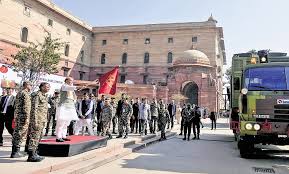
- 25 Jan 2025
In News:
Defence Minister Rajnath Singh recently flagged off Sanjay, an indigenously developed Battlefield Surveillance System (BSS), to be inducted into the Indian Army in phased manner from March to October 2025, designated as the ‘Year of Reforms’ by the Ministry of Defence.
Overview:
- Nature: Automated surveillance system
- Purpose: To integrate real-time data from ground and aerial sensors, enabling swift, informed decision-making in conventional and sub-conventional warfare scenarios.
Key Features:
- Common Surveillance Picture (CSP): Fuses verified sensor data to generate a real-time surveillance image of the battlefield.
- Real-time Integration & Analytics: Processes inputs using advanced analytics to eliminate duplication and enhance situational awareness.
- Secure Networks: Operates over the Indian Army’s Data Network and Satellite Communication Network, ensuring reliable and secure data flow.
- Centralized Web Application: Provides integrated inputs to Command Headquarters and Army HQ through a unified platform, supporting the Indian Army's Decision Support System.
- Indigenous Development: Jointly developed by the Indian Army and Bharat Electronics Limited (BEL) under the Buy (Indian) category, promoting Aatmanirbharta in defense.
Operational Significance:
- Enhances battlefield transparency, situational awareness, and surveillance capabilities along vast and sensitive land borders.
- Functions as a force multiplier in Intelligence, Surveillance & Reconnaissance (ISR) operations.
- Enables network-centric warfare, marking a shift towards data-driven military operations.
Deployment:
- To be inducted into all Brigades, Divisions, and Corps of the Army in three phases (March–October 2025).
Guillain-Barré Syndrome (GBS)

- 24 Jan 2025
In News:
The Pune Health Department has reported a surge in Guillain-Barré Syndrome (GBS) cases, prompting concern due to its severe neurological impact and association with prior infections or immune responses.
What is Guillain-Barré Syndrome?
- Nature of Disorder: A rare autoimmune condition where the body’s immune system attacks the peripheral nervous system, affecting voluntary muscle control and sensory signals (e.g., pain, temperature, and touch).
- Medical Term: Also known as Acute Inflammatory Demyelinating Polyradiculoneuropathy (AIDP).
- System Affected: Peripheral nerves, i.e., nerves outside the brain and spinal cord.
Epidemiology:
- Prevalence: Rare but potentially life-threatening.
- Age Group Affected: Can occur at any age but is most common between 30 to 50 years.
- Non-contagious: GBS is not transmitted from person to person.
Causes and Triggers:
- Exact Cause: Unknown, but usually follows an immune response to:
- Infections: Campylobacter jejuni (foodborne bacteria), Epstein-Barr Virus (EBV), Cytomegalovirus (CMV), respiratory or urinary tract infections.
- Vaccinations: Rarely observed post-immunisation.
- Surgery or trauma: Can act as physical stressors that trigger the syndrome.
Symptoms:
- Initial Signs: Tingling and weakness starting in the legs, progressing upwards.
- Progression:
- Weakness in arms, facial muscles.
- Difficulty walking or balancing.
- In severe cases, respiratory paralysis, requiring ventilator support.
- Onset: Can escalate within hours, days, or weeks.
- Range: Varies from mild muscle weakness to complete paralysis.
Impact:
- Neurological Disruption: Affects communication between the brain and muscles.
- Temporary but Debilitating: Most patients recover over weeks to months, though rehabilitation may be prolonged.
- Critical Care: May require intensive medical and respiratory support in acute stages.
Diagnosis & Treatment:
- No definitive cure, but early intervention improves outcomes.
- Main Treatments:
- Intravenous Immunoglobulin (IVIG):
- Contains healthy antibodies from donated blood.
- Helps suppress the immune attack on nerves.
- Plasmapheresis (Plasma Exchange): Filters harmful antibodies from the blood.
- Supportive Therapy:
- Mechanical ventilation in case of respiratory failure.
- Physiotherapy for muscle recovery and mobility.
Ad Hoc High Court Judges

- 24 Jan 2025
In News:
To address the mounting pendency of criminal cases in several High Courts, the Supreme Court of India has suggested invoking Article 224A of the Constitution, which allows the appointment of retired High Court judges on an ad hoc basis.
Constitutional Provision: Article 224A
- Title: Appointment of Retired Judges at Sittings of High Courts.
- Key Provision: The Chief Justice of a High Court, with the consent of the President, may invite retired judges of the same or other High Courts to act as judges temporarily.
- Status: These judges enjoy the powers, jurisdiction, and privileges of regular High Court judges, but are not deemed permanent judges.
Why the Provision is Being Invoked Now:
- Backlog of Cases: Over 40% vacancy rate in High Courts; huge pendency, especially of criminal cases.
- Delays in Regular Appointments: Slow process of regular judicial appointments prompted the Supreme Court to consider alternative mechanisms.
- Underuse of Article 224A: Only three recorded instances of ad hoc appointments since Independence:
- Justice Suraj Bhan – MP High Court (1972)
- Justice P. Venugopal – Madras High Court (1982–83)
- Justice O.P. Srivastava – Allahabad High Court (2007, Ayodhya case)
Judicial Interpretation – Lok Prahari v. Union of India (2021):
- The Supreme Court laid down guidelines for invoking Article 224A.
- The process must be routed through the SC collegium (CJI + 2 senior-most judges).
- Trigger Point for Appointment:
- High Court vacancies exceed 20% of sanctioned strength (excluding pending proposals).
- More than 10% of pending cases are over 5 years old.
Procedure for Appointment:
- Consent: Retired judge must agree to serve again.
- Initiation: Chief Justice of the High Court forwards the name.
- State and Centre: Proposal routed through State CM → Union Law Ministry.
- SC Collegium: Must review and approve the name.
- Executive Clearance: Law Ministry → PM → President for final approval.
Term & Allowances:
- Duration: Typically 2–3 years, renewable if required.
- Number of Judges: Suggested 2–5 ad hoc judges per High Court.
- Remuneration: Entitled to allowances as per Presidential order.
- Status: Have full judicial powers during tenure.
Concerns & Safeguards:
- Fear of using ad hoc appointments as a substitute for regular appointments.
- Therefore, SC mandates that regular appointment process must be underway before invoking Article 224A.
- Periodic review and panel creation of eligible retired judges recommended.
M23 Armed Group
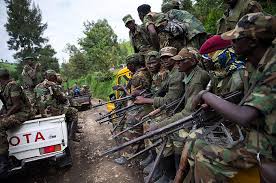
- 24 Jan 2025
In News:
The March 23 Movement (M23), a rebel group active in eastern Democratic Republic of Congo (DRC), has intensified its insurgency in North Kivu province, capturing key areas like Minova and threatening the provincial capital, Goma.
About M23 Armed Group:
- Full Form: March 23 Movement
- Formation: 2012, by mutineers from the Congolese army protesting a failed 2009 peace deal.
- Base of Operations: Eastern DRC, primarily in North Kivu province.
- Activities: Armed rebellion, territorial control, ethnic conflict, disruption of state authority.
External Support:
- Rwandan Involvement:
- UN Reports (2023): Estimated 3,000–4,000 Rwandan troops operating alongside M23.
- Rwanda alleged to have “de facto control” over M23 operations.
- Kigali denies direct territorial aggression claims.
- International Concerns: The group’s resurgence reflects broader regional instability and transnational military dynamics.
Recent Developments (2024):
- Territorial Gains: Capture of Minova; encroachment on Goma, a strategic and densely populated city.
- Humanitarian Crisis:
- Over 2,30,000 displaced since January 2024.
- Influx of injured civilians in hospitals; risk of further displacement and violence.
- Congolese Military Weakness:
- Internal instability and operational setbacks have contributed to M23’s advances.
- The Congolese army acknowledged a “breakthrough” by M23 with external backing.
Geographical Significance of the Region:
- DRC Capital: Kinshasa
- Strategic Location: Borders 9 countries—Angola, Zambia, Tanzania, Burundi, Rwanda, Uganda, South Sudan, Central African Republic, Republic of Congo.
- Topography:
- Rwenzori & Virunga Mountains: Includes active volcanoes (e.g., Mount Nyiragongo).
- Congo River: Vital for transport, hydroelectric power, and biodiversity.
- Natural Resources:
- Rich in cobalt, coltan, gold, and other rare minerals—critical to the global tech industry.
- The mineral wealth of North Kivu is a major driver of prolonged conflict.
India’s Deep Ocean Mission
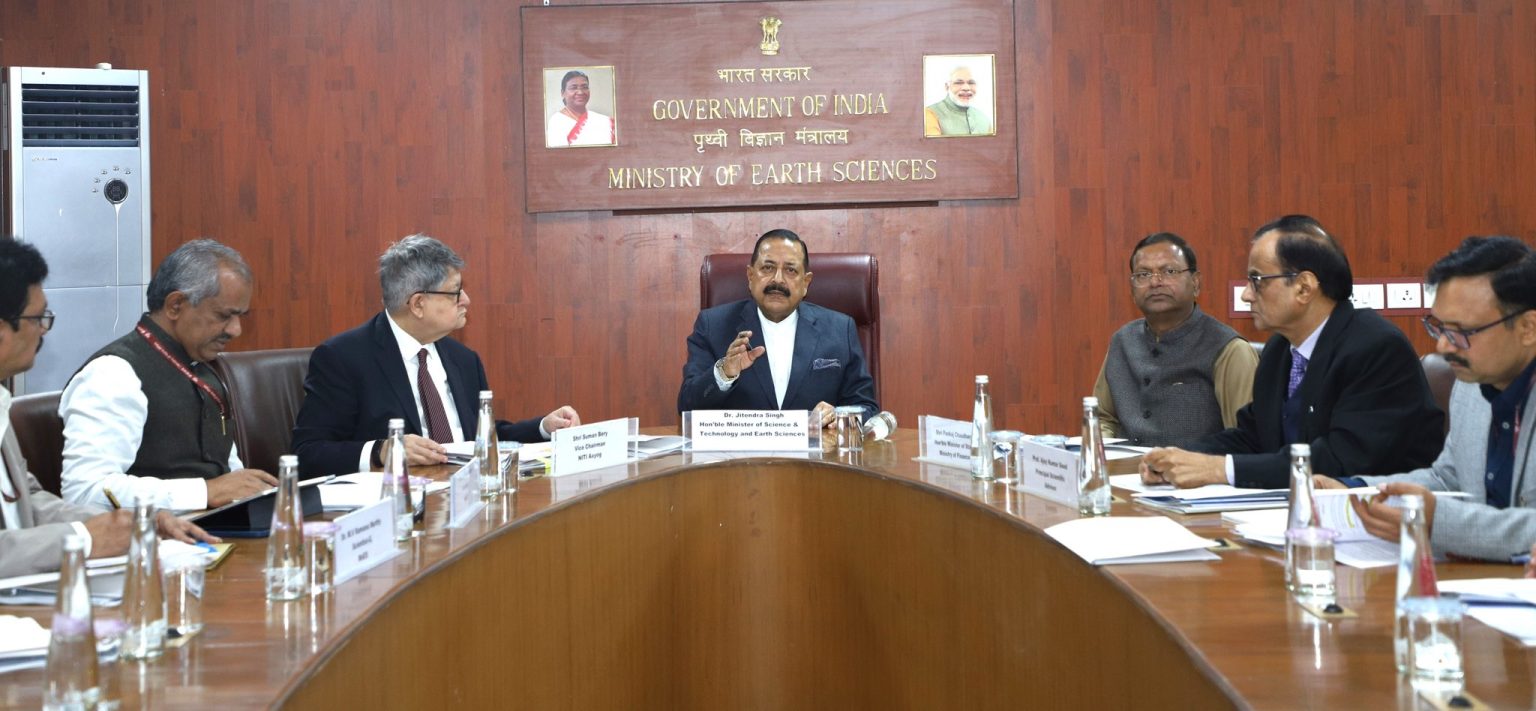
- 24 Jan 2025
In News:
India is set to deploy its first human-operated deep-sea submersible as part of the Deep Ocean Mission (DOM), marking a significant leap in the country’s marine research and technological capability.
Key Highlights:
- Submersible Deployment (2024):
- India will operate its first human submersible at a depth of 500 meters this year.
- The goal is to reach a depth of 6,000 meters by 2025.
- The project aligns with the timelines of Gaganyaan, India’s first human space mission—showcasing parallel progress in marine and space technology.
- Indigenous Technology:
- The mission is powered by 100% indigenous technology, underlining India’s growing self-reliance in high-end scientific infrastructure.
About Deep Ocean Mission (DOM):
- Launched: 2021
- Nodal Ministry: Ministry of Earth Sciences (MoES)
- Budget: ?4,077 crore over five years
- Framework: One of nine key missions under PM-STIAC (Prime Minister’s Science, Technology, and Innovation Advisory Council)
Core Objectives:
- Develop deep-sea technologies, including a manned submersible for ocean exploration.
- Explore and harness ocean resources such as: Polymetallic nodules, Hydrothermal sulphides & Rare earth metals
- Study marine biodiversity for sustainable fisheries and conservation.
- Support India’s blue economy through innovation and research.
- Monitor ocean climate change and develop advisory services.
- Promote marine biology and biotechnology via dedicated marine research stations.
- Harvest renewable energy and freshwater from ocean sources.
Key Components and Technologies:
Matsya6000 Submersible:
- India’s first manned deep-sea vehicle.
- Designed to reach 6,000 meters depth.
- Crew Capacity: Three members
- Developed by: National Institute of Ocean Technology (NIOT), Chennai
- Structure: Made of titanium alloy, withstanding 6,000 bar pressure
- Equipped with: Scientific sensors, tools for sampling, viewports, propellers, and acoustic communication systems.
- Combines capabilities of ROVs (Remotely Operated Vehicles) and AUVs (Autonomous Underwater Vehicles).
Varaha Deep-Ocean Mining System:
- Developed by NIOT
- Successfully conducted trials at 5,270 meters
- Key to India’s future in deep-sea mining of critical minerals
Strategic Importance:
- Scientific Advancement: DOM places India among a select group of nations (USA, Russia, China, France, Japan) with human-crewed deep-ocean exploration capacity.
- Economic Potential: Unlocks access to underwater mineral wealth, critical for electronics, defense, and energy sectors.
- Environmental Sustainability: Supports marine biodiversity conservation and promotes sustainable use of oceanic resources.
- Geopolitical Significance: Enhances India’s presence and influence in the Indian Ocean Region (IOR).
- Technological Leap: Strengthens India’s capabilities in underwater robotics, materials engineering, and ocean sciences.
Is Poverty Being Underestimated in India?
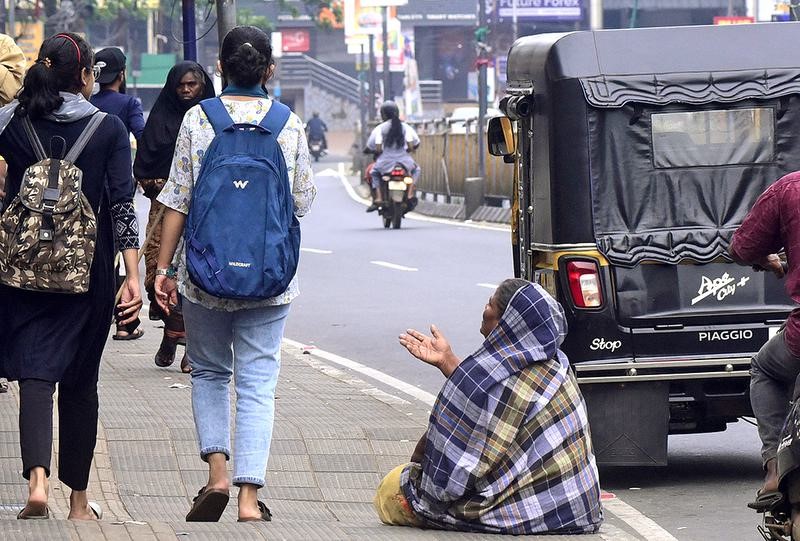
- 24 Jan 2025
In News:
The recent 2023-24 Household Consumption Expenditure Survey (HCES) showed a decline in poverty across rural and urban India. However, questions have emerged about whether poverty is being underestimated, due to changes in methodologies, definitions, and data availability.
Evolution of Poverty Measurement in India
- 1970s to 2005: Poverty was defined based on minimum calorie intake; updated every 5 years using NSSO data.
- Tendulkar Committee introduced in response to divergence between NSSO and National Accounts data.
- Post-2011-12: No official poverty estimates or surveys; alternative indices like Multidimensional Poverty Index (MPI) were used.
Current Data Issues
- Different recall periods in surveys (7-day, 30-day, 365-day) create non-comparability.
- Modified Mixed Recall Period (MMRP) introduced in 2017-18 and improved upon in recent years with three household visits, enhancing recall and thus raising reported expenditures.
- Result: Using older poverty lines on newer, higher expenditure data underestimates poverty.
Diverging Poverty Estimates
- Dr. C. Rangarajan (2022-23): Estimated poverty at around 10%.
- Recent factsheet (2023-24) suggests poverty may have declined to single digits.
- A paper using Rangarajan’s methodology on 2022-23 HCES data estimated 25% poverty, but this is debated.
Reasons for Poverty Reduction
- High GDP growth, increased public expenditure, and improved public delivery systems.
- National Food Security Act covers nearly 80 crore people.
- Broadened definition of poverty now includes non-food items and essential services.
- Decline in poverty estimated around 17-18% between 2011-12 and 2023-24.
Rural-Urban Trends
- Consumption gap between rural and urban areas is narrowing.
- Rural consumption patterns becoming more urban-like.
- 2011 Census definitions outdated — many rural areas are peri-urban in character.
Need for Poverty Line Revision
- Lack of consensus and official backing on methodology hinders creation of a new poverty line suited to current data.
- UNDP’s global poverty line is $2.15/day; India’s poverty was 12.9% in 2019 by that metric.
- NITI Aayog’s estimates do not support 25% poverty claim.
Debate on Multidimensional Poverty Index
- India’s MPI (12 indicators) differs from UNDP’s 10-indicator framework.
- Additions like bank accounts and maternal health are India-specific.
- Criticism: Once indicators (e.g., electricity, bank accounts) are met, they remain met — poverty appears to decline permanently, while income vulnerability is not captured.
Estimation and Measurement of India’s Digital Economy – MeitY Report (2025)
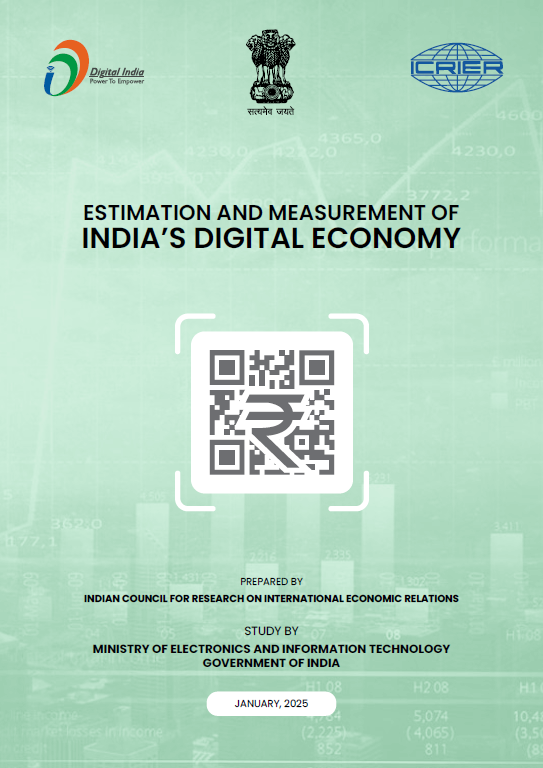
- 23 Jan 2025
In News:
Release of Report ‘Estimation and Measurement of India’s Digital Economy’ by Ministry of Electronics & Information Technology.
Key Highlights:
- Released by: Ministry of Electronics & Information Technology (MeitY)
- Prepared by: Indian Council for Research on International Economic Relations (ICRIER)
- Significance: First credible and current estimate of the digital economy using international frameworks (OECD & ADB).
- India is the first developing country to adopt the OECD framework for measuring the digital economy.
Key Findings (2022–23)
Indicator Details
Size ?31.64 lakh crore (~USD 402 billion), 11.74% of national income (GVA)
Employment 14.67 million workers (2.55% of the workforce)
Projected Share by 2029–30 Nearly 20% of GDP (surpassing agriculture & manufacturing)
Structure of India’s Digital Economy
- Digitally Enabling Industries (7.83% of GVA): ICT services, telecom, manufacturing of digital hardware
- New Digital Industries (2%): Big Tech, digital platforms, intermediaries (e.g., e-commerce, ride-sharing)
- Digitalization of Traditional Sectors (2%): BFSI (Banking, Financial Services, Insurance), trade, education
- Insight: Digital transformation is spreading beyond ICT into traditional sectors.
Frameworks Used
Framework Purpose
OECD Estimating core digital and enabling sectors
ADB Input-Output Broader economic impact via inter-industry linkages
India’s Expansion Includes digital share in BFSI, trade, education – not covered under OECD
Key Drivers of India’s Digital Economy
- Widespread mobile use: 1.14 billion subscribers in India
- High internet traffic: 3rd globally, with avg. 16.9 GB/month
- 5G leadership: 2nd largest 5G smartphone market in 2024
- Aadhaar success: 1.3+ billion biometric IDs issued
- Digital payments boom: 1,644 billion transactions in FY24
- ICT service exports: USD 162 billion (2nd highest globally)
- AI leadership: India leads GitHub AI contributions (23%)
- Startup ecosystem: 3rd highest number of unicorns globally
Future Projections (By 2030)
- Digital economy to reach ~20% of national income
- Growth drivers:
- Expansion of digital platforms & intermediaries
- Deepening digitalization in all sectors
- Greater internet & broadband access
Challenges in Measuring Digital Economy
- Difficulty in defining digital sectors due to their integrated nature
- Conventional national accounting systems are inadequate
- Lack of data from:
- Informal sector digitalization
- Smaller platforms and startups
- Digital shifts in healthcare, logistics, etc.
Importance of This Report
- Policy Formulation: Enables targeted strategies for digital growth
- Business Strategy: Helps identify trends, plan investments
- Global Standing: Puts India among early adopters of robust measurement frameworks
Mission SCOT
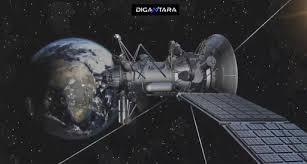
- 23 Jan 2025
In News:
The Prime Minister of India praised Indian space startup Digantara for the successful launch of Mission SCOT (Space Camera for Object Tracking) — the world’s first commercial SSA satellite, launched via SpaceX’s Transporter-12 rideshare mission.
What is Mission SCOT?
Feature Description
Developer Digantara (Indian space startup), supported by Aditya Birla Ventures & SIDBI
Launched on SpaceX Transporter-12 mission (rideshare platform)
Type First commercial Space Situational Awareness (SSA) satellite
Orbit Sun-Synchronous Orbit – ideal for consistent Earth observation
Function Tracks Resident Space Objects (RSOs) as small as 5 cm in Low Earth Orbit (LEO)
What is Space Situational Awareness (SSA)?
- SSA involves the detection, tracking, cataloging, and prediction of natural and man-made objects in Earth's orbit (like satellites, debris, etc.).
- Ensures safe and sustainable operations by minimizing collision risks.
- Critical due to increasing congestion in LEO, especially with rising numbers of small satellites and mega-constellations.
Key Features of Mission SCOT
Feature Advantage
High Revisit Rate More frequent observations of objects in orbit
Precision Tracking Can track debris ≥ 5 cm in size
All-Weather Monitoring Overcomes limitations of ground-based systems like cloud cover, FoV
Space-based System Unhindered by geography, providing continuous global surveillance
Supports SSA Infrastructure Aids in collision avoidance, space traffic management, and defence preparedness
???????? India’s SSA Ecosystem
Initiative Role
ISRO’s IS4OM Provides Indian Space Situational Assessment Report (ISSAR); enables safe & sustainable space operations
NETRA Project Network for Space Objects Tracking & Analysis – aims to build a dedicated SST (Space Surveillance & Tracking) network using radars & optical telescopes
Multi-Object Tracking Radar Operated at Sriharikota – limited range, being augmented
Collision Avoidance Manoeuvres (CAMs) Regularly performed by ISRO to protect its satellites from debris threats
Global Context: Transporter-12 Rideshare
- A SpaceX program providing low-cost access to space by allowing multiple customers to launch small payloads on a single rocket.
- Enhances global commercial space activity, democratizes space access.
Significance for India
Strategic:
- Strengthens national space defence by enabling indigenous tracking of space threats.
- Reduces reliance on foreign SSA data (e.g., NORAD/US Space Command).
Technological:
- Demonstrates India’s capability in space-based surveillance tech.
- Positions India as a global contributor in the emerging SSA domain.
Economic:
- Boosts private sector space innovation aligned with India’s NewSpace Policy.
- Attracts venture capital and international collaboration.
LID-568

- 23 Jan 2025
In News:
In 2024, an international team of astronomers using NASA’s James Webb Space Telescope (JWST) and the Chandra X-ray Observatory discovered a low-mass supermassive black hole, LID-568, showing super-Eddington accretion—a rare and extreme feeding process—just 1.5 billion years after the Big Bang.
About LID-568
Feature Description
Type Low-mass supermassive black hole
Age Formed ~1.5 billion years after Big Bang (Universe’s “youth”)
Discovery Observed via Chandra (X-ray) & JWST (infrared)
Location In a distant galaxy with very low star formation
Feeding Rate Accreting at ~40× the Eddington limit (super-Eddington accretion)
Key Concepts
Eddington Limit
- Theoretical upper limit on how fast matter can fall into a black hole before radiation pressure balances gravitational pull.
- Exceeding this limit (super-Eddington) is thought to be unstable and short-lived.
Super-Eddington Accretion
- Observed in LID-568, feeding at 40× Eddington rate.
- Suggests rapid, short bursts of black hole growth, not the slow, steady model previously assumed.
Why is LID-568 Important?
Challenges Current Theories
- Traditional black hole growth models require:
- Long periods (hundreds of millions of years).
- Seed black holes formed from:
- Death of first stars (light seeds: 10–100 solar masses).
- Collapse of primordial gas clouds (heavy seeds: 1,000–100,000 solar masses).
- LID-568 suggests brief, intense growth spurts could create supermassive black holes faster than previously thought.
Impact on Host Galaxy
- Powerful outflows prevent gas accumulation → suppresses star formation.
- Indicates black holes can regulate galaxy evolution, even when young.
Scramjet & Hypersonic Technology
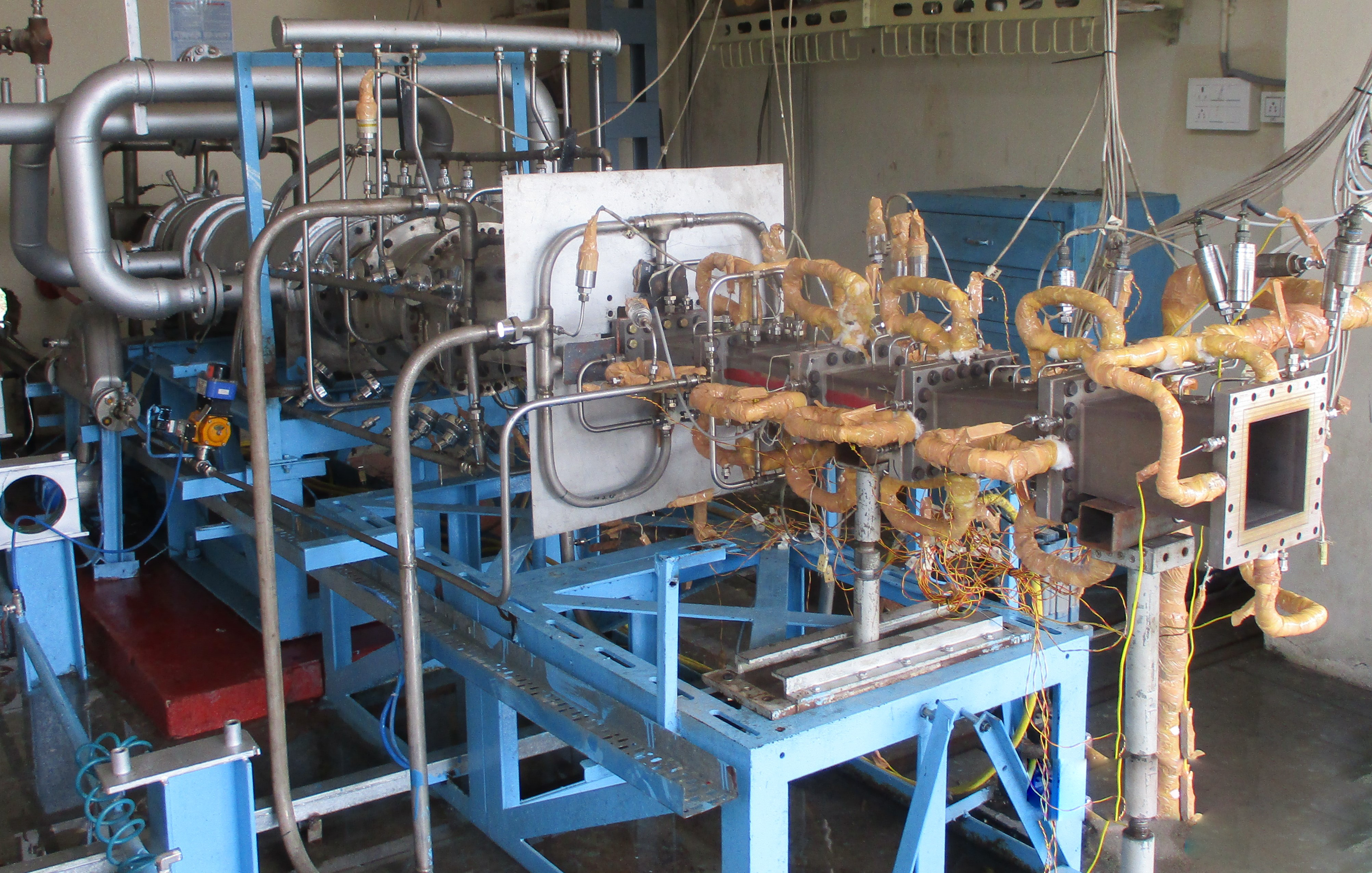
- 23 Jan 2025
In News:
On 21 January 2025, DRDO’s Defence Research & Development Laboratory (DRDL) successfully conducted a 120-second ground test of an indigenously developed Scramjet (Supersonic Combustion Ramjet) engine, marking a major milestone in India’s journey towards hypersonic missile technology.
What is Scramjet Technology?
Definition
A Scramjet is an air-breathing engine that sustains combustion at supersonic speeds—optimized for speeds above Mach 5 (hypersonic range).
Working Principle
- Utilizes vehicle’s forward motion to compress incoming air—no onboard oxidizer needed.
- Injects fuel into the compressed supersonic airflow → ignition → high-speed thrust.
- Operates without moving parts, making it lightweight, efficient, and reliable.
Key Indigenous Innovations
Feature Description
Active-Cooled Combustor Stable combustion achieved at 1.5 km/s airflow, comparable to "keeping a candle lit in a hurricane."
Endothermic Scramjet Fuel First-time development in India; offers cooling + ignition efficiency.
Thermal Barrier Coating (TBC) Jointly developed with DST; withstands temperatures beyond melting point of steel using advanced ceramic coating.
CFD Simulations Used for design optimization and performance validation of flame-holding techniques.
Significance of Scramjet Test
- Stable Combustion: A major challenge in hypersonic propulsion, now successfully demonstrated.
- Hypersonic Missiles:
- Speeds >Mach 5 (~5400 km/h).
- Bypass air defence systems due to speed and maneuverability.
- Enable rapid, high-impact delivery.
- Reusable Launch Vehicles:
- Cuts satellite launch costs via air-breathing propulsion.
- Strategic Edge:
- India joins elite group: USA, Russia, China.
- Strengthens defence deterrence & technological sovereignty.
- Technology Spillover: Advancements in CFD, materials science, flame stabilization, and fuel chemistry.
Global Hypersonic Race
- China (2021): Tested nuclear-capable hypersonic glide vehicle (HGV) that orbited Earth before hitting target.
- USA & Russia: Advanced programs with operational hypersonic systems (e.g., Avangard, Zircon, ARRW).
- India: Now developing indigenous hypersonic missile platform.
Scramjet & Hypersonic Technology

- 23 Jan 2025
In News:
On 21 January 2025, DRDO’s Defence Research & Development Laboratory (DRDL) successfully conducted a 120-second ground test of an indigenously developed Scramjet (Supersonic Combustion Ramjet) engine, marking a major milestone in India’s journey towards hypersonic missile technology.
What is Scramjet Technology?
Definition
A Scramjet is an air-breathing engine that sustains combustion at supersonic speeds—optimized for speeds above Mach 5 (hypersonic range).
Working Principle
- Utilizes vehicle’s forward motion to compress incoming air—no onboard oxidizer needed.
- Injects fuel into the compressed supersonic airflow → ignition → high-speed thrust.
- Operates without moving parts, making it lightweight, efficient, and reliable.
Key Indigenous Innovations
Feature Description
Active-Cooled Combustor Stable combustion achieved at 1.5 km/s airflow, comparable to "keeping a candle lit in a hurricane."
Endothermic Scramjet Fuel First-time development in India; offers cooling + ignition efficiency.
Thermal Barrier Coating (TBC) Jointly developed with DST; withstands temperatures beyond melting point of steel using advanced ceramic coating.
CFD Simulations Used for design optimization and performance validation of flame-holding techniques.
Significance of Scramjet Test
- Stable Combustion: A major challenge in hypersonic propulsion, now successfully demonstrated.
- Hypersonic Missiles:
- Speeds >Mach 5 (~5400 km/h).
- Bypass air defence systems due to speed and maneuverability.
- Enable rapid, high-impact delivery.
- Reusable Launch Vehicles:
- Cuts satellite launch costs via air-breathing propulsion.
- Strategic Edge:
- India joins elite group: USA, Russia, China.
- Strengthens defence deterrence & technological sovereignty.
- Technology Spillover: Advancements in CFD, materials science, flame stabilization, and fuel chemistry.
Global Hypersonic Race
- China (2021): Tested nuclear-capable hypersonic glide vehicle (HGV) that orbited Earth before hitting target.
- USA & Russia: Advanced programs with operational hypersonic systems (e.g., Avangard, Zircon, ARRW).
- India: Now developing indigenous hypersonic missile platform.
10 years of Beti Bachao Beti Padhao (BBBP)
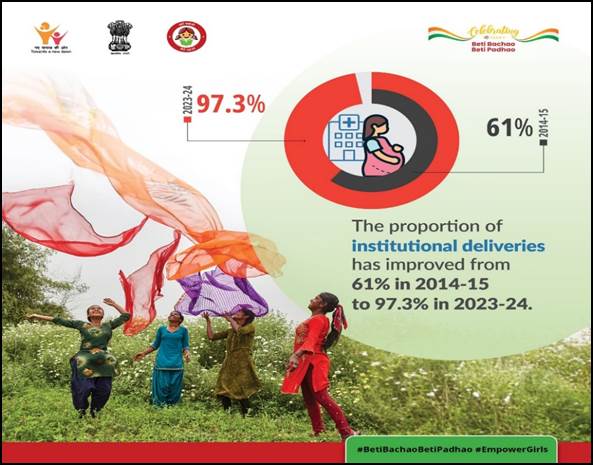
- 23 Jan 2025
In News:
Launched on 22nd January 2015 in Panipat, Haryana, BBBP was initiated in response to the declining Child Sex Ratio (CSR), which stood at 918 girls per 1000 boys (Census 2011). It marked a key step towards gender equality, aiming to curb gender-biased sex-selective elimination and improve the status of the girl child.
Key Highlights:
Core Objectives
- Improve Sex Ratio at Birth (SRB) by two points annually.
- Sustain institutional delivery rate at ≥95%.
- Increase 1st trimester ANC registration and girls' enrollment in secondary education by 1% annually.
- Reduce dropout rates among girls.
- Promote safe menstrual hygiene management (MHM).
Target Groups
- Primary: Young couples, expecting parents, adolescents, households, communities.
- Secondary: Schools, AWCs, health professionals, PRIs, ULBs, NGOs, SHGs, media, and religious leaders.
Implementation Structure
- Type: Centrally Sponsored Scheme (CSS) with 100% Central funding.
- Ministries Involved:
- Women and Child Development
- Health and Family Welfare
- Education
- Financial Assistance (Per District/Year):
- Rs. 40 lakh (SRB ≤918)
- Rs. 30 lakh (SRB 919–952)
- Rs. 20 lakh (SRB >952)
Integration with Mission Shakti (2021–2026)
BBBP now functions under Mission Shakti, which comprises two verticals:
- Sambal (Safety & Security):
- One Stop Centres (OSCs)
- Women Helpline (181)
- Nari Adalat: Alternative dispute resolution
- Samarthya (Empowerment):
- Sakhi Niwas, Palna Creches
- Shakti Sadans (rehabilitation)
- PM Matru Vandana Yojana: Extended support for a second girl child
- SANKALP-HEW: District-level single-window system for all women-centric schemes
Achievements in 10 Years (2015–2025)
- SRB: Improved from 918 (2014-15) to 930 (2023-24)
- Girls’ GER: Rose from 75.5% (2014-15) to 78% (2023-24) in secondary education
- Institutional Deliveries: Increased from 61% to 97.3%
- Kanya Shiksha Pravesh Utsav: Re-enrolled over 1 lakh out-of-school girls
- Economic Empowerment: Integration with skilling initiatives and 70% of PM Mudra loans disbursed to women
- Awareness Campaigns:
- Selfie with Daughter
- Beti Janmotsav
- Yashaswini Bike Expedition
- "Betiyan Bane Kushal" Skill Conference
Sukanya Samriddhi Yojana (SSY) – A Financial Tool for Empowerment
Launched under BBBP, SSY is a small savings scheme to ensure the financial security of girl children.
Key Features
- Eligibility: Indian girl child below 10 years.
- Account: Max 2 per family (exceptions for twins/triplets).
- Deposit Limit: ?250 to ?1.5 lakh/year (15 years).
- Tenure: Account matures 21 years after opening.
- Withdrawals: Up to 50% for higher education after 18 years.
- Tax Benefits: Exempt under Section 80C (EEE status).
Impact
- Over 4.1 crore accounts opened by Nov 2024.
- Promotes long-term savings and financial inclusion.
- Complements BBBP by addressing economic empowerment of girls.
Mission Vatsalya
- Formerly ICPS (2009), then Child Protection Services (2017).
- Merged into Mission Vatsalya in 2021.
- Focuses on:
- Juvenile justice
- Child protection
- Advocacy and rehabilitation
- Ensures “no child is left behind” principle aligned with SDGs.
Pradhan Mantri Matru Vandana Yojana (PMMVY)
- Supports pregnant and lactating mothers:
- ?5,000 in 3 installments + ?1,000 (JSY)
- Now extended to second girl child to promote gender equity.
Targets wage compensation, safe delivery, maternal nutrition, and reduced MMR/IMR.
Mount McKinley
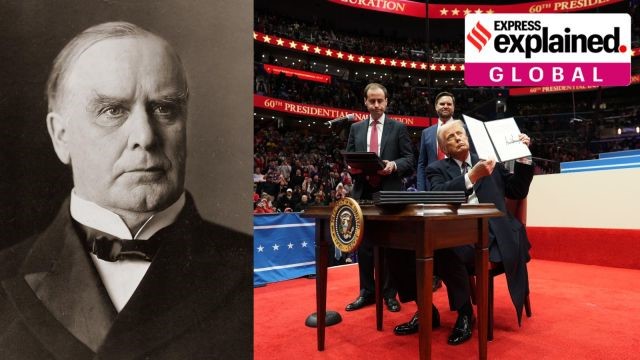
- 22 Jan 2025
In News:
In a controversial move, President Donald Trump (2025) signed an executive order to rename Denali (North America’s highest peak) back to Mount McKinley, and also proposed renaming the Gulf of Mexico to the Gulf of America, citing the need to "honor American greatness."
About Denali / Mount McKinley:
Feature Description
Location Alaska Range, South-Central Alaska, USA
Height 20,310 feet (6,190 meters) – Highest in North America
Geology Giant granite block uplifted by tectonic activity ~60 million years ago
Glaciers Feeds major glaciers: Kahiltna, Muldrow, Peters, Ruth, Traleika
Tectonics Lies along the Denali Fault, a major right-lateral strike-slip fault
National Park Forms the core of Denali National Park and Preserve
Historical Background of the Name:
- Original Name: Denali, meaning “The High One” in the Athabascan language of the Koyukon people.
- 1897: Renamed Mount McKinley by a gold prospector in honor of President William McKinley (1897–1901).
- 1917: Official federal recognition with the creation of Mount McKinley National Park.
- 1980: Park renamed Denali National Park and Preserve; mountain's name remained McKinley federally.
- 2015: Obama administration officially renamed the peak Denali through the U.S. Department of the Interior.
- 2025: Trump issued executive order to revert the name to Mount McKinley, stating McKinley “deserves” the honor.
Rationale Behind Trump’s Renaming Order:
- Claims it honors McKinley’s legacy: economic growth, leadership in Spanish-American War, and tariff reforms.
- Declares Obama’s 2015 decision an “affront” to American heritage.
- Connects the move to his broader theme of “Restoring Names that Honor American Greatness.”
Opposition & Cultural Sensitivity:
- Alaska’s bipartisan leadership, including Senators Lisa Murkowski (R) and Scott Kawasaki (D), oppose the move.
- Indigenous groups maintain that Denali is the rightful and culturally authentic name.
- Critics argue it undermines native heritage and local identity.
Renaming the Gulf of Mexico to “Gulf of America”:
- Also part of Trump’s 2025 executive order.
- Geographic Facts:
- Borders the US, Mexico, and Cuba.
- Crucial to the US energy sector:
- 14% of US crude oil
- 5% of US natural gas
- 48% of refining capacity
- International Validity: The International Hydrographic Organization (IHO) allows local name usage but retains “Gulf of Mexico” in global records.
- Not binding on Mexico or Cuba.
International & Historical Parallels in Naming Disputes:
- Persian Gulf vs. Arabian Gulf (Iran vs. Arab states)
- Sea of Japan vs. East Sea (Japan vs. South Korea)
- South China Sea: Multiple nations claim different names and areas.
About the Denali Fault:
- Major strike-slip fault running through Alaska.
- Responsible for extensive tectonic movement and uplift of Denali.
- Evidence of horizontal displacement (~483 km) over millions of years.
- Marked the final suturing of tectonic plates in North American geological history.
Diamond Imprest Authorization (DIA) Scheme

- 22 Jan 2025
In News:
The Union Government, under the Foreign Trade Policy 2023, has introduced the Diamond Imprest Authorization (DIA) Scheme to enhance India’s competitiveness in the global diamond trade, promote exports, and protect employment, especially in the MSME sector.
Key Highlights:
Objectives:
- Boost value addition and export growth in the diamond sector.
- Support MSME exporters to compete globally.
- Retain India’s position as a global hub for diamond processing and exports.
- Mitigate recent challenges like export decline, job losses, and global demand shifts.
Key Features of the Scheme:
Feature Details
Type of Diamonds Allowed Natural cut and polished diamonds less than ¼ carat (25 cents)
Eligibility Exporters with Two Star Export House status and minimum $15 million annual exports
Export Obligation 10% value addition on imported diamonds
Duty Exemptions Exempts Basic Customs Duty, Anti-dumping Duty, Countervailing Duty, etc.
Effective Date April 1, 2025
Exclusion Lab-Grown Diamonds (LGDs) not covered
Monitoring Agency Gems and Jewellery Export Promotion Council (GJEPC)
Why the Scheme Was Introduced:
Challenges in the Diamond Sector:
- Global: Falling demand in US, Europe, China; rise in lab-grown diamonds.
- Domestic: High unsold inventory, rising operational costs, reduced credit flow, and high corporate tax.
- Employment Impact: Job losses in the diamond cutting and polishing segment.
International Context:
- Inspired by beneficiation policies in diamond-producing countries like Botswana and Namibia, which mandate local value addition.
Significance:
- Enhances India’s role in the global diamond value chain.
- Provides ease of doing business through duty relief.
- Promotes employment generation, especially for diamond assorters and processors.
- Facilitates inclusive growth by supporting MSMEs in a traditionally export-driven industry.
Way Forward:
- Regulate Lab-Grown Diamonds to prevent market distortion.
- Extend export credit period and consider tax exemptions for foreign diamond sellers.
- Ensure technology upgradation and skill training to sustain global leadership.
Closing the Women’s Health Gap
- 22 Jan 2025
In News:
The World Economic Forum (WEF), in collaboration with the McKinsey Health Institute, released the report titled “Blueprint to Close the Women’s Health Gap”, highlighting the economic and social benefits of addressing gender-based health disparities.
Key Insights from the Report:
Economic Potential:
- Closing the women’s health gap could contribute $400 billion to global GDP by 2040.
- Focusing on just three conditions—menopause, PMS, and migraine—could unlock $315 billion in productivity.
Health Disparity:
- Women experience 25% more years of poor health than men.
- Root causes include underrepresentation in research and sex-neutral clinical guidelines.
- Only 10% of trials on major conditions like ischemic heart disease and migraine include sex-disaggregated data.
Key Health Conditions Identified:
Lifespan Conditions:
- Maternal hypertensive disorders
- Postpartum hemorrhage
- Ischemic heart disease
- Cervical cancer
- Breast cancer
Health Span Conditions:
- Endometriosis
- Menopause
- Migraine
- Premenstrual syndrome (PMS)
Addressing these can add 2.5 healthy days per woman per year globally.
Women’s Health Impact Tracking (WHIT):
- A public digital platform by WEF and McKinsey.
- Tracks global health disparities.
- Offers data-driven insights to guide investment and policy decisions, especially for low- and middle-income countries which face 54% of the global women's health burden, yet host only 23% of related clinical trials.
Five Strategic Actions for Stakeholders:
- Count Women – Improve data collection specific to women’s health.
- Study Women – Boost research funding on women-centric health conditions.
- Care for Women – Create tailored clinical guidelines and protocols.
- Include All Women – Ensure equity for marginalized groups.
- Invest in Women – Finance innovative healthcare solutions and service delivery models.
One Nation, One Legislative Platform
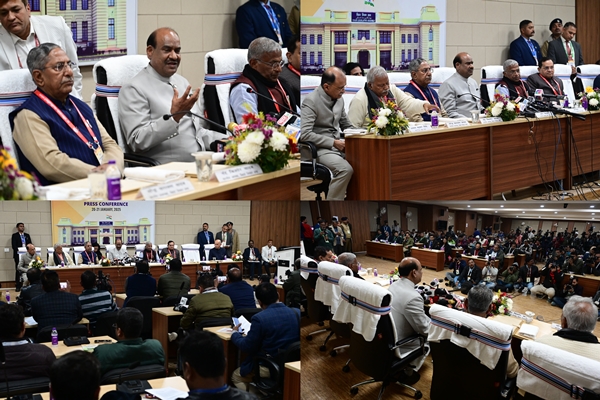
- 22 Jan 2025
In News:
- The 85th AIPOC, held in Patna, Bihar, emphasized enhancing the effectiveness of legislative institutions through reforms in decorum, digitization, and public participation.
- A major outcome was the announcement of the One Nation, One Legislative Platform to digitally integrate legislative bodies across India.
All India Presiding Officers’ Conference (AIPOC):
- Established: 1921; first session held in Shimla.
- Role: Apex platform bringing together Presiding Officers of Parliament and State Legislatures.
- Objective: Strengthen democratic institutions by fostering cooperative federalism, legislative accountability, and improved law-making processes.
2025 Conference Highlights:
- Venue: Historic Bihar Legislature Premises, Patna.
- Key Themes:
- Reducing disruptions and maintaining decorum in legislative houses.
- Promoting qualitative debate and discussion.
- Observing the 75th year of the Constitution with participatory democratic celebrations.
- Resolutions Adopted:
- Formulation of internal code of conduct by political parties.
- Nationwide campaigns involving PRIs, urban bodies, students, NGOs, media, and more to celebrate democratic values.
One Nation, One Legislative Platform (ONOLP):
What It Is:
A national mission to create a unified digital ecosystem integrating the Parliament, state legislatures, and local bodies for better legislative coordination and public access.
Key Objectives:
- Real-Time Data Sharing: Seamless, up-to-date legislative information across institutions—proceedings, bills, debates, etc.
- Transparency & Accountability: Open access to deliberations enables citizen oversight and institutional accountability.
- Public Participation: User-friendly access encourages civic engagement in law-making and governance.
- AI & Tech Integration: Use of Artificial Intelligence for data analysis, decision support, and enhanced efficiency.
- Paperless Legislatures: Digitization of records to promote sustainability and reduce bureaucratic delays.
Implementation Support:
- Spearheaded by the Lok Sabha, with Speaker Om Birla announcing its completion by 2025.
- Includes the creation of a central portal for public and institutional use.
Chinar Trees
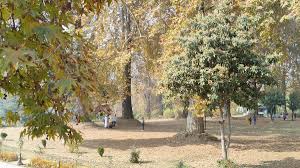
- 22 Jan 2025
In News:
The J&K Forest Department, in collaboration with the J&K Forest Research Institute (JKFRI), has launched a pioneering conservation initiative to digitally preserve the iconic Chinar trees (Platanus orientalis)—a vital part of Kashmir’s ecological and cultural heritage.
Significance of Chinar Trees:
- Locally known as Boonyi or Boueen, Chinar trees are deeply embedded in Kashmir’s cultural identity.
- These deciduous trees can grow up to 30 meters tall with a girth of 10–15 meters, and can live for over 600 years.
- They are known for their seasonal leaf color transformation—from green in summer to red, amber, and yellow in autumn.
- Notable specimens include Asia’s largest Chinar in Ganderbal and the oldest known Chinar (647 years) in Chattergam, Budgam.
Challenges to Chinar Survival:
- Urban expansion and habitat encroachment.
- Climate change, altering precipitation and temperature patterns.
- Illegal felling and timber exploitation.
- Increased susceptibility to pests and diseases.
Tree Aadhaar & Geo-Tagging Initiative:
- Over 28,500 Chinar trees have been geo-tagged and assigned unique Tree Aadhaar numbers from 2021 to 2023.
- Each tree is fitted with a QR-coded digital plate, enabling real-time access to:
- Tree location, height, girth, canopy dimensions
- Health status, ecological threats, and pest presence
- These plates are spring-mounted metal tags to prevent damage to the trees.
Conservation Goals & Future Plans:
- Digital Protection: Enables proactive monitoring and protection through a centralized database.
- Chinar Atlas: A comprehensive mapping of all Chinar trees in the region.
- Public Access Website: A dedicated digital portal is planned for broader access to Chinar data.
- Risk Assessment: Use of USG-based, non-invasive surveys to identify trees at risk without human interference.
- Emphasis on covering remote and restricted areas in future phases to ensure inclusivity in conservation.
Takers, Not Makers
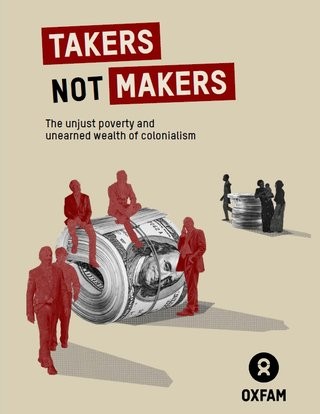
- 21 Jan 2025
In News:
Report “Takers not makers: The unjust poverty and unearned wealth of colonialism” published by Oxfam.
Key Highlights:
- Released by: Oxfam International at the World Economic Forum 2025
- Core Focus: The report explores historical colonial wealth extraction, especially from India, and connects it to contemporary global inequalities.
Colonial Wealth Drain – India:
- $64.82 trillion extracted from India by Britain (1765–1900), adjusted to today’s value.
- $33.8 trillion (52%) enriched the UK’s richest 10%
- 32% benefited the British middle class
- India's industrial output dropped from 25% in 1750 to 2% in 1900 due to:
- British protectionist policies (especially targeting Asian textiles)
- High taxation, home charges, currency manipulation, and profit repatriation
Conceptual Framework:
- "Drain of Wealth" Theory by Dadabhai Naoroji forms the report’s foundation.
- Colonialism framed as both:
- Historical phenomenon: Loot, repression, forced de-industrialization
- Modern structure (Neo-colonialism): Corporate dominance, digital colonization, and unjust global governance
Neo-Colonial Parallels Today:
- Wages in Global South: 87–95% lower than for same work in Global North
- Multinational corporations:
- Descendants of colonial entities like the East India Company
- Extract resources & exploit labor under unequal terms of trade
- Global institutions like WTO and World Bank perpetuate inequity through imbalanced power dynamics
Ongoing Consequences in Global South:
- Poor public services, education, and healthcare
- Caste, religion, and language divisions institutionalized during colonial rule
- E.g., Only 0.14% of Indian languages used as medium of instruction
- Bengal Famine (1943): Caused by wartime policies & racist attitudes, ~3 million deaths
- Biopiracy cases (e.g., neem) reflect continued exploitation
Wealth Disparity & Inequality:
- Billionaire wealth tripled in growth rate in 2024 (vs. 2023)
- Top 1% own more than 95% of global wealth
- Over 3.5 billion people survive on less than $6.85/day
ILO Global Estimates on International Migrant Workers – 2022
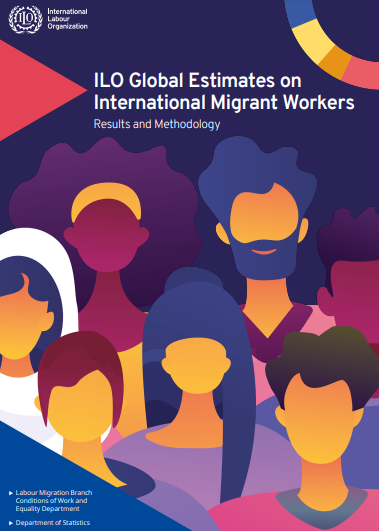
- 21 Jan 2025
In New:
By addressing labour market shortages in host nations and contributing remittances to home countries, International Migrants (IM) continue to make contributions to world economic growth, the fourth edition of ‘Global Estimates on International Migrant Workers’, released by the International Labour Organization (ILO), stated.
Key Findings:
Global Representation:
- International Migrants (IMs) = 4.7% of global labour force - 167.7 million total:
- Employed: 155.6 million
- Unemployed (but seeking work): 12.1 million
- Increase of 30+ million migrant workers since 2013
- Growth rate dropped below 1% annually (2019–2022) due to COVID-19
Gender Composition:
- Male IMs: 61.3% (102.7 million)
- Female IMs: 38.7% (64.9 million)
- Lower female participation attributed to:
- Lower female migration rates globally
- Gender-based barriers in labour markets
- Over-representation in informal and unpaid sectors
Age Distribution:
- Prime working age (25–54 yrs): 74.9%
- Youth (15–24 yrs): 9.3%
- Older adults (55–64 yrs): 12.5%
- Seniors (65+ yrs): 3.4%
Sector-wise Employment:
Sector Share of IMs Notes
Services 68.4% Highest; women dominate (80.7%)
Industry 24.3% On par with non-migrants
Agriculture 7.4% Far lower than non-migrants (24.3%)
Care economy in high-income countries is a major pull for female migrants.
Host Country Distribution:
Region/Income Group % of IMs Notes
High-income countries 68.4% (114 million) Majorly Europe & North America
Upper-middle-income 17.4% (29.2 million)
Arab States 13.3% Declined since 2013
Europe (23.3%) and North America (22.6%) are top destinations. Arab states saw a 3% decline over the decade.
Definition: International Migrants (IMs)
As per the UN: Persons residing in a country different from their place of usual residence for at least one year, regardless of reason or legal status. Includes refugees, asylum seekers, etc.
Role & Contributions of IMs:
- Economic Drivers: Fill labour shortages (healthcare, construction, care work).
- Remittances: Boost home country economies.
- Demographic Support: Help address aging populations in developed nations.
Cultural Exchange: Promote diversity and global connectivity.
Mount Ibu Eruption

- 21 Jan 2025
In News:
Indonesia’s Mount Ibu erupted 1,000 times this month.
Overview:
- Location: Mount Ibu, Halmahera Island, North Maluku province, Indonesia.
- Volcano Type: Stratovolcano (composite volcano) – steep-sided, conical structure formed by successive layers of lava, ash, and pyroclastic material.
- Tectonic Setting: Located on the Pacific Ring of Fire, a major area of subduction zones with high volcanic and seismic activity.
Volcanic Context – Indonesia:
- Pacific Ring of Fire: Indonesia's location makes it one of the most volcanically active regions globally.
- Other Recent Eruptions:
- Mount Lewotobi Laki-Laki (twin-peaked volcano)
- Mount Ruang
- Both have shown heightened activity, triggering mass evacuations.
Indian Coffee Sector
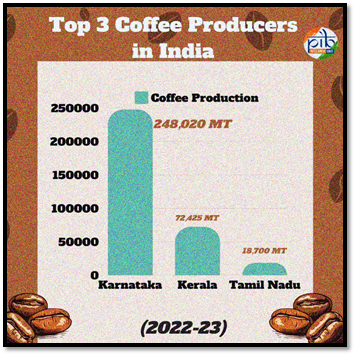
- 21 Jan 2025
In News:
India is now the seventh-largest coffee producer globally with exports reaching $1.29 billion in FY 2023-24, almost double the $719.42 million in 2020-21.
Historical Background
- Origin: Coffee was introduced to India in the 17th century by Baba Budan, a Sufi saint, who brought seven Mocha beans from Yemen and planted them in Baba Budan Giri hills, Karnataka.
- This act laid the foundation for India’s coffee cultivation, which has since evolved into a robust agro-industry.
India’s Global Coffee Status
- 7th largest coffee producer globally (FY 2023–24).
- Exports: Reached $1.29 billion in FY 2023–24, nearly double the $719.42 million in FY 2020–21.
- Major export destinations: Italy, Belgium, Russia.
- Export Share: Over 70% of India's coffee is exported, mostly in unroasted (green bean) form.
Types of Coffee Cultivated
- Arabica: Mild flavor, higher market value.
- Robusta: Strong flavor, more robust; often used in instant coffee.
- India's production: Around 75% is a mix of Arabica and Robusta.
Geographical Distribution
- Major Coffee-Growing Regions:
- Karnataka: Leads with over 70% of national production (~248,020 MT in 2022–23).
- Kerala and Tamil Nadu follow.
- Other contributors: Andhra Pradesh, Odisha, and parts of Northeast India
- Agro-climatic Conditions:
- Altitude: 600–1600 meters
- Temperature: 15°C–28°C
- Rainfall: 150–250 cm annually
- Soil: Well-drained, loamy, rich in humus and minerals
Economic & Environmental Significance
- Coffee is largely grown in the Western and Eastern Ghats, biodiversity-rich zones with shade-grown plantations.
- These plantations:
- Conserve ecology and biodiversity
- Support sustainable agriculture
- Contribute to rural livelihoods
Domestic Trends
- Rising café culture, urbanization, and higher disposable incomes have led to increased coffee consumption.
- Domestic consumption rose from 84,000 tonnes (2012) to 91,000 tonnes (2023).
- Preference for coffee over tea is growing, especially in urban and semi-urban India.
Government Initiatives
- Coffee Board of India initiatives under the Integrated Coffee Development Project (ICDP) aim to:
- Enhance yields
- Expand to non-traditional areas
- Promote sustainable practices
- Araku Valley Model:
- Involves 150,000 tribal families
- 20% increase in production
- Backed by Girijan Co-operative Corporation (GCC) and Integrated Tribal Development Agency (ITDA)
- Aligned with Aatmanirbhar Bharat and rural empowerment
Current Challenges and Future Outlook
- Challenges: Climate change impacts, pest attacks, price volatility in global markets.
- Opportunities:
- Rising global demand for value-added products (roasted & instant coffee)
- Export incentives and improved logistics
- Potential for agri-tourism and organic branding
Entity Locker

- 21 Jan 2025
In News:
The National eGovernance Division (NeGD), under the Ministry of Electronics and Information Technology (MeitY) has developed Entity Locker, a cutting-edge digital platform designed to transform the management and verification of business/organisation documents.
Key Highlights:
What is Entity Locker?
A secure, cloud-based platform that allows real-time access, encrypted storage, and authenticated sharing of business-related documents.
Who can use it?
Large corporations, MSMEs, startups, trusts, societies, and other organizational entities.
- Key Features:
- 10 GB Encrypted Cloud Storage: Ensures secure document management.
- Real-Time Document Access & Verification: Integrated with government databases.
- Consent-Based Sharing: Ensures data privacy during information exchange.
- Digital Signature Authentication: Enables legally valid and secure transactions.
- Aadhaar-Authenticated Role-Based Access: Promotes accountability in document handling.
- Integration with Government Systems: Linked with entities like:
- Ministry of Corporate Affairs (MCA)
- Goods and Services Tax Network (GSTN)
- Directorate General of Foreign Trade (DGFT)
Benefits:
- Reduces administrative burden and document processing time.
- Enhances compliance with statutory and regulatory requirements.
- Enables faster processes like vendor verification, loan applications, and FSSAI compliance.
- Promotes transparency and secure collaboration among stakeholders.
Significance:
Entity Locker is a pivotal component of India’s Digital Public Infrastructure, reflecting the Union Budget 2024–25 vision of promoting digital governance. It supports the broader goals of the Digital India Programme, aiming for a digitally empowered and efficient economy.
ILO World Employment and Social Outlook 2025
- 20 Jan 2025
In News:
The global economy is slowing down, making it harder for labour markets to recover fully since the outbreak of the COVID 19 pandemic, according to the International Labour Organization’s (ILO) report, World Employment and Social Outlook: Trends 2025, released in Geneva
Global Employment Trends
- Unemployment Rate (2024): Remained steady at 5%.
- Youth Unemployment: High at 12.6%, particularly severe in upper-middle-income countries (16%).
- Global Jobs Gap:
- 402 million people want work but are jobless (2024):
- 186 million unemployed
- 137 million temporarily unavailable
- 79 million discouraged workers
- 402 million people want work but are jobless (2024):
- NEET Population (2024):
- 259.1 million globally:
- 173.3 million young women (28.2%)
- 85.8 million young men (13.1%)
- 259.1 million globally:
Economic Growth and Labour Recovery
- Global Growth (2024): 3.2% (↓ from 3.3% in 2023 and 3.6% in 2022)
- Forecast (2025): Similar growth expected, with gradual deceleration ahead.
- Recovery Remains Uneven:
- High-income countries see rise in labour force participation.
- Low-income countries (LICs) face challenges creating decent jobs, with informal work returning to pre-pandemic levels.
- India’s GDP Growth:
- 6.9% in 2024, forecast at 6.4% in 2025
- Driven by monetary easing, domestic demand, and public investment
- Southern Asia: Growth pegged at 6.2% in 2024, 5.8% in 2025, mainly due to India.
- Labour Participation:
- Significant increase in female labour force participation, especially in India.
Key Labour Market Challenges
- Geopolitical Tensions
- Climate Change Costs
- Unresolved Debt Issues
- ~70 countries at risk of debt distress
- Many LICs spend more on debt servicing than on education/health
- Stagnant Real Wages
- Post-pandemic wage recovery mostly in advanced economies
- Vulnerable Jobs in Developing Regions
- Sub-Saharan Africa: 62.6% households live on <USD 3.65/day
- Employment is mainly informal, lacking security
Green and Digital Transitions
- Green Jobs Growth:
- Employment in renewables rose from 13.7 million (2022) to 16.2 million (2023)
- 46% of green energy jobs are in China
- Digital Economy:
- Offers promise, but infrastructure and skills gap limit benefits in many countries.
ILO Recommendations for Social Justice & SDG 2030 Goals
- Boost Productivity & Job Creation: Invest in skills training, education, and infrastructure
- Expand Social Protection: Better access to social security and safe work conditions
- Leverage Private Capital: LICs should channel remittances and diaspora funds into development
- Structural Transformation: Focus on modern services and manufacturing for quality jobs
- Youth Skill Development: Promote education for emerging sectors like green tech and digital economy
- Global Collaboration: Foster inclusive fiscal and monetary policies for equitable recovery
About ILO
- Established: 1919 | UN Agency
- Members: 187 countries
- Headquarters: Geneva, Switzerland
- Unique Tripartite Structure: Brings together governments, employers, and workers to set labour standards and promote decent work for all.
Dark Oxygen
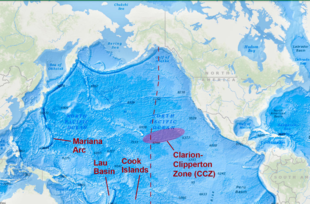
- 20 Jan 2025
In News:
Scientists who recently discovered that metal lumps on the dark seabed make oxygen, have announced plans to study the deepest parts of Earth's oceans in order to understand the strange phenomenon.
What is Dark Oxygen?
Dark Oxygen refers to oxygen produced deep under the ocean without sunlight or photosynthesis.
Discovered in July 2024, this challenges the long-standing belief that photosynthesis is the sole natural source of oxygen.
Where was it discovered?
- Location: Clarion-Clipperton Zone (CCZ), 13,100 feet deep in the North Pacific Ocean, between Hawaii and Mexico.
- Zone Significance: Rich in polymetallic nodules containing manganese, iron, cobalt, nickel, copper, and lithium — crucial for green technologies.
Mechanism of Oxygen Production
- Polymetallic nodules on the seafloor generate oxygen via electrochemical reactions.
- These nodules split seawater (H?O) molecules into hydrogen and oxygen, without any light.
- This process is non-biological and independent of photosynthesis.
Why is this Discovery Important?
- Scientific Paradigm Shift: Challenges the idea that photosynthesis is the only natural pathway for oxygen generation.
- Origins of Life: Suggests that oxygen production may have existed before photosynthetic organisms, reshaping theories of early Earth’s evolution.
- Astrobiological Implications: Indicates the possibility of oxygen-rich environments on other planets, even without sunlight — enhancing the search for extraterrestrial life.
- Environmental Tech Potential: Could lead to innovations in renewable energy and carbon-neutral technologies, using metal-based catalysis.
About the Clarion-Clipperton Zone (CCZ)
- Geographic span: Between Hawaii and Mexico in the North Pacific Ocean.
- Resources: Contains vast reserves of critical minerals like manganese, nickel, cobalt — essential for electric vehicles and solar technology.
- A focus area for deep-sea mining and sustainability studies.
National Panchayat Awards 2024
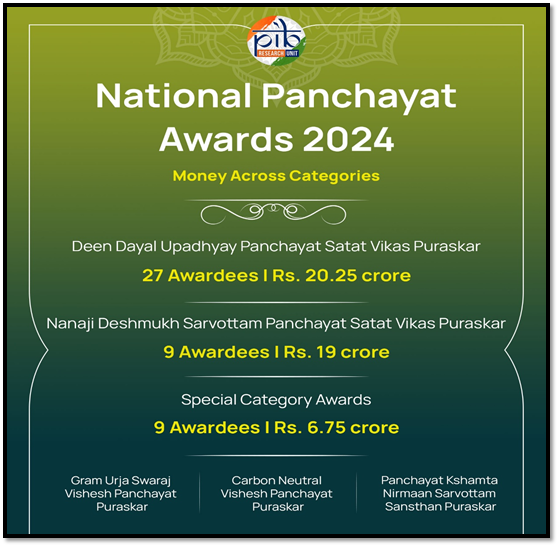
- 20 Jan 2025
In News:
The President of India conferred the National Panchayat Awards 2024 on 45 outstanding Panchayats for their contributions to inclusive growth, environmental sustainability, and rural development. The event was held on 11th December 2024 (postponed from 24th April due to General Elections).
About the Awards
- Launched to commemorate: 73rd Constitutional Amendment Act, 1992, which gave constitutional status to Panchayats as institutions of local self-governance.
- Usual celebration date: 24th April — observed as National Panchayati Raj Day.
- Revamped in 2022 to align with Sustainable Development Goals (SDGs) via Localization of SDGs (LSDGs).
Objectives
- Recognize best practices in rural governance.
- Encourage healthy competition among Panchayats.
- Promote effective implementation of LSDGs and quality service delivery.
Evaluation Structure
- Multi-level assessment: Block → District → State/UT → National level.
- Evaluation based on 9 LSDG themes, including:
- Poverty-Free & Enhanced Livelihoods
- Healthy Panchayat
- Child-Friendly Panchayat
- Water-Sufficient Panchayat
- Clean & Green Panchayat
- Self-Sufficient Infrastructure
- Socially Just & Secured Panchayat
- Panchayat with Good Governance
- Women-Friendly Panchayat
Award Categories
Award Category Focus Area
Deen Dayal Upadhyay Panchayat Satat Vikas Puraskar (DDUPSVP) Top 3 GPs under each LSDG theme
Nanaji Deshmukh Sarvottam Panchayat Satat Vikas Puraskar Top 3 GPs, Block Panchayats & District Panchayats with highest scores across all themes
Gram Urja Swaraj Vishesh Panchayat Puraskar GPs promoting renewable energy adoption
Carbon Neutral Vishesh Panchayat Puraskar GPs achieving net-zero carbon emissions
Panchayat Kshamta Nirmaan Sarvottam Sansthan Puraskar Institutions providing exemplary support to PRIs in implementing LSDGs
Key Highlights of 2024:
- Total Awards: 45 Panchayats
- Women Leadership: 42% of award-winning Panchayats led by women.
- Participation: 1.94 lakh Gram Panchayats competed.
- Prize Money: ?46 crore transferred digitally to awardees.
- Booklet Released: Best Practices of Awardee Panchayats.
- Film Showcased: Highlighting success stories and capacity-building.
State-wise Recognition
- Notable awardees from: Odisha, Tripura, Maharashtra, Uttar Pradesh, Andhra Pradesh, Kerala, Telangana, Assam, etc.
- Tripura & Odisha stood out in total recognitions.
- GPs from Maharashtra, Odisha, and Tripura received special awards for energy and carbon neutrality.
Other Key Initiatives for PRIs
Initiative Purpose
SVAMITVA Scheme (2020) Mapping rural property to provide Record of Rights.
e-Gram Swaraj (e-FMS) Work-based accounting to promote transparency.
mActionSoft Geo-tagging Panchayat assets via GPS-enabled photos.
Citizen Charter Portal “Meri Panchayat Mera Adhikaar” – Service delivery assurance to citizens.
India–Singapore Semiconductor Cooperation

- 20 Jan 2025
In News:
During his 2025 visit to India, Singapore President Tharman Shanmugaratnam announced plans to collaborate with India on semiconductor manufacturing and the creation of a semiconductor ecosystem, marking the 60th anniversary of diplomatic ties between the two nations.
Singapore’s Semiconductor Landscape
- Contribution to Economy: Accounts for ~8% of Singapore’s GDP.
- Global Standing:
- Produces 10% of global semiconductor output.
- 5% of global wafer fabrication capacity.
- 20% of global semiconductor equipment production.
- Comprehensive Ecosystem: End-to-end capabilities from IC design to packaging and testing.
- Infrastructure: Four wafer fabrication parks with advanced facilities.
- Current Limitation: Focused on mature-node chips (28 nm+); lacks high-end logic chip manufacturing (7 nm or below).
India’s Semiconductor Sector
- Market Size (2024): Valued at USD 52 billion; projected to reach USD 103.4 billion by 2030.
- Import Dependency: ~85% of semiconductor needs met through imports.
- Export-Import Gap (2022): USD 5.36 billion (imports) vs. USD 0.52 billion (exports).
India's Advantages:
- Skilled Talent Pool: Large number of STEM graduates.
- Cost Efficiency: Lower manufacturing and operational costs.
- Geopolitical Opportunity: Global supply chain diversification away from China.
Government Initiatives:
- India Semiconductor Mission (ISM)
- Semicon India Programme
- Display & Semiconductor Fab Schemes
- SPECS (Scheme for Promotion of Manufacturing of Electronic Components and Semiconductors)
Foreign Collaborations:
- MoUs with US, Japan, and European Commission.
- Tata–Powerchip (Taiwan) collaboration for a fab in Dholera, Gujarat.
How Singapore Can Support India’s Semiconductor Vision
- Manufacturing Partnerships:
- Collaborations with Singaporean firms for assembly and testing services.
- Access to Singapore's advanced manufacturing technologies.
- Talent Development:
- Academic exchanges in microelectronics and semiconductor engineering.
- Joint research and PhD programs.
- Infrastructure Development:
- Replication of Singapore-style wafer fab parks in India.
- Joint ventures to build specialized semiconductor industrial zones.
- Technology Access & Innovation:
- Transfer of advanced technologies and critical semiconductor materials.
- Collaboration on new-generation tech solutions (e.g., AI chips, advanced computing).
Additional Areas of Bilateral Cooperation
- Digital Economy: Exploring data corridor between GIFT City (India) and Singapore.
- Sustainability: Cooperation on green hydrogen, sustainable aviation fuel, and renewable energy.
Strategic Partnership: Upgraded to Comprehensive Strategic Partnership in 2024.
Internet Governance Internship and Capacity Building (IGICB) Scheme
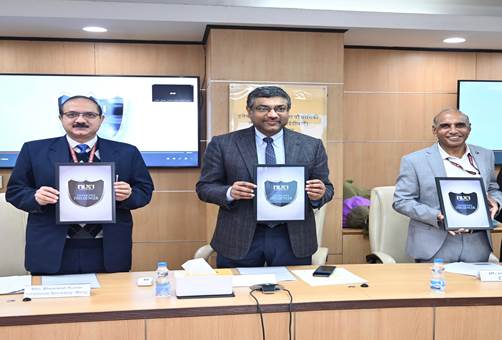
- 20 Jan 2025
In News:
The National Internet Exchange of India (NIXI) announced the launch of its Internet Governance Internship and Capacity Building Scheme. This program aims to build awareness and develop expertise in internet governance (IG) among Indian citizens.
Key Highlights:
Objective:
To develop awareness and build a skilled pool of professionals in Internet Governance (IG) in India, enabling active Indian participation in global digital policy platforms.
Key Features:
- Internship Format:
- Bi-annual internship with two tracks: 3-month and 6-month durations
- Mentorship by experts from:
- International bodies (e.g., ICANN, APNIC, APTLD)
- Academic institutions and retired officials
- Stipend: ?20,000/month
- Outreach Component: Mandatory awareness programs to be conducted by interns
Focus Areas:
- Engagement with I-Star organizations, such as:
- ICANN (Internet Corporation for Assigned Names and Numbers)
- ISOC (Internet Society)
- IEEE (Institute of Electrical and Electronics Engineers)
- IETF (Internet Engineering Task Force)
- Exposure to global best practices and policy mechanisms in digital governance
- Capacity building for inclusive participation in emerging internet issues
Significance:
- Promotes digital policy leadership among Indian youth
- Enhances India’s representation in global internet governance dialogues
- Fosters a tech-savvy and policy-aware workforce for digital India initiatives
About NIXI (National Internet Exchange of India):
- Established: 19 June 2003
- Type: Not-for-profit (Section 8 company)
- Parent Ministry: MeitY
- Mandate:
- Enhance internet adoption and digital infrastructure in India
- Key Services:
- Internet Exchange Points (IXPs): Facilitate domestic internet traffic exchange
- .IN Registry: Manage India’s country code top-level domain (.in)
- IRINN: Allocate IPv4 and IPv6 resources within India
Capacity Building & Training: Promote internet-related knowledge and skills
Ratnagiri Buddhist Site

- 19 Jan 2025
In News:
The Archaeological Survey of India (ASI) has resumed excavations at the ancient Buddhist site of Ratnagiri in Odisha’s Jajpur district, unveiling monumental discoveries that underline its rich religious, cultural, and maritime legacy. This renewed effort comes more than 60 years after the site was first excavated between 1958 and 1961.
About Ratnagiri
- Meaning: Ratnagiri translates to “Hill of Jewels.”
- Location: Situated on a hill between the Brahmani and Birupa rivers, northeast of Bhubaneswar.
- Part of the Diamond Triangle: Along with Lalitgiri and Udaygiri, Ratnagiri forms Odisha’s famed “Diamond Triangle” of Buddhist heritage sites.
- Historical Period: Flourished between the 5th and 13th centuries CE, peaking under the Bhauma-Kara dynasty (8th–10th century CE).
- Buddhist School: An important centre for Mahayana and especially Vajrayana (Tantrayana) Buddhism.
- It possibly rivalled Nalanda in prominence as a Buddhist learning centre.
- The monastery complex at Ratnagiri is the only one in India with a curvilinear roof, once housing about 500 monks.
Recent Discoveries by ASI
- Three colossal Buddha heads, each measuring 3–4 feet.
- A massive palm sculpture, 5 feet in size.
- Hundreds of votive stupas, sculptures of Buddhist deities.
- A monolithic elephant statue, 5 feet long and 3.5 feet tall.
- Pottery, inscribed stones, beads, stone pillars, and a brick wall believed to be part of a larger structure.
- Rich ceramic assemblages, which may shed light on the region’s cultural and technological evolution.
These artefacts are estimated to date back to the 8th and 9th centuries CE and are believed to enhance understanding of Buddhism’s evolution in Odisha and its linkages with other cultures.
Buddhism in Odisha & Southeast Asian Links
- Buddhism gained a strong foothold in Odisha after Emperor Ashoka’s conquest of Kalinga (modern-day Odisha) in 261 BCE, a turning point that led him to embrace Buddhism.
- Though Buddha never visited Odisha, the region became instrumental in spreading Buddhism to Southeast Asia, especially during the Bhauma-Kara period.
- The state maintained robust maritime trade and cultural links with regions like Java, Bali, Sumatra, Borneo, Myanmar, and Sri Lanka.
- Baliyatra Festival: A vibrant annual event held in Cuttack, commemorating Odisha’s ancient seafaring ties with Bali and other Southeast Asian regions.
- According to some studies, Chinese monk Hiuen Tsang may have visited Ratnagiri during his travels in India (638–639 CE).
Significance of the Renewed Excavations
- The ASI aims to uncover partially visible structures, complete the site’s mapping, and contextualize the findings within the broader Buddhist history of India and Southeast Asia.
- Researchers hope to discover signs of foreign architectural or cultural influences, further confirming ancient Odisha’s global Buddhist and trade connections.
- The discoveries reaffirm Ratnagiri’s importance as a cornerstone of Buddhist learning and art, potentially on par with other renowned ancient centres like Nalanda and Vikramashila.
Interest Equalisation Scheme (IES)
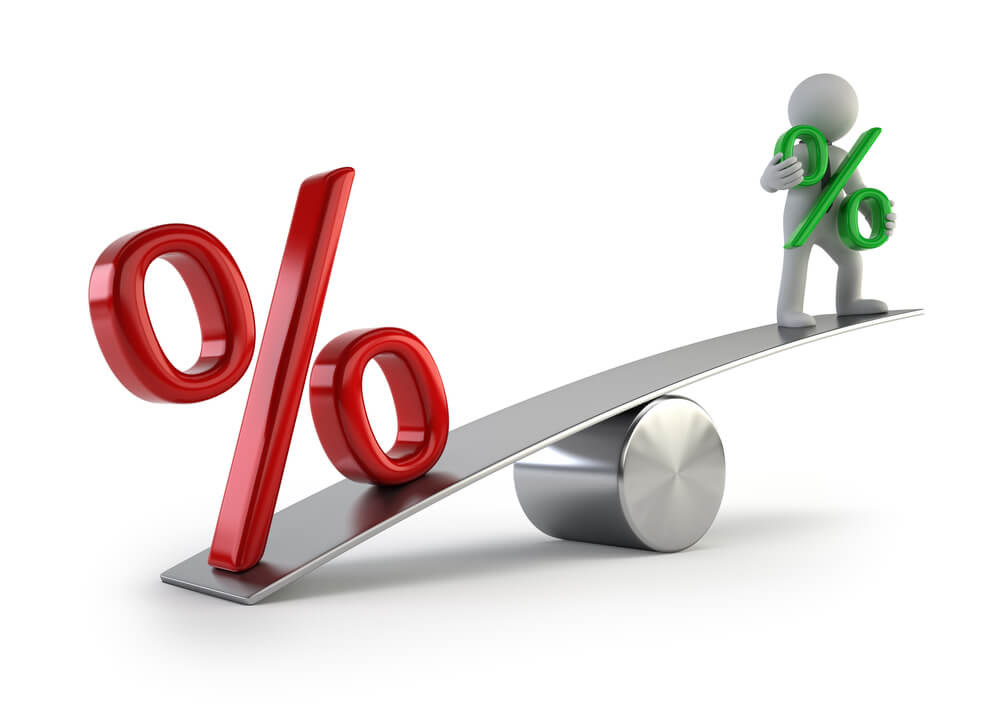
- 19 Jan 2025
In News:
- Launched in April 2015, the Interest Equalisation Scheme (IES) offers subsidised interest rates on pre- and post-shipment export credit to Indian exporters, particularly MSMEs.
- The Commerce Ministry has sought a Rs 3,000 crore extension of the scheme beyond December 2024, with emphasis on supporting MSME exporters amidst global economic challenges.
Objectives of IES:
- Reduce Cost of Credit: Offers 3% to 5% interest subvention to make export credit affordable.
- Boost Export Competitiveness: Enables Indian exporters, especially MSMEs, to match international pricing.
- Encourage Export Diversification: Supports MSMEs in exploring new markets and products.
- Enhance Financial Inclusion: Promotes access to formal credit systems for small exporters.
Key Features:
- Interest Subsidy:
- 3% for MSME manufacturer exporters.
- 2% for merchant and manufacturer exporters of 410 specified tariff lines.
- Coverage: Initially limited to select products, later extended to all MSME exporters.
- Implementation:
- Managed by the RBI, in coordination with DGFT and authorized banks.
- Subsidy reimbursed to banks offering export credit at reduced rates.
- Banks exceeding Repo Rate + 4% are excluded.
Need for Extension:
- The scheme expired in December 2024, but exporters are demanding continuation due to:
- Rising global inflation and logistics disruptions (e.g., Red Sea crisis).
- Increase in credit duration demands from foreign buyers (120–150 days).
- Decline in export credit availability despite higher demand.
- FIEO reports a drop in outstanding export credit from ?2.27 lakh crore (2023) to ?2.17 lakh crore (2024).
- MSMEs operate on thin margins, and the subvention can make or break deals.
Significance for MSMEs:
- MSMEs contribute ~45% to India’s total exports and often struggle with high borrowing costs and limited financial access.
- Affordable credit via IES allows MSMEs to:
- Remain price competitive.
- Take larger and longer-term orders.
- Invest in product innovation and value addition.
- Improve market diversification and resilience.
Challenges in Accessing Credit:
- Stringent eligibility norms and collateral requirements.
- Complex administrative procedures for availing benefits.
- Limited awareness among small enterprises about the scheme.
- Slow disbursal and inconsistent application by banks.
Policy Implications and the Way Forward:
- A revamped, MSME-focused IES can ensure inclusive growth and boost India’s export-led development.
- Calls for:
- Simplification of procedural norms.
- Higher interest subvention limits or removal of caps (e.g., ?50 lakh per IEC holder).
- Longer validity (multi-year horizon) for predictability and planning.
- Aligns with the broader goals of Atmanirbhar Bharat, Make in India, and achieving $1 trillion in exports by 2030.
Exercise La Perouse 2025
- 19 Jan 2025
In News:
India is participating in the fourth edition of the multinational naval exercise La Perouse, hosted by France in key maritime straits—Malacca, Sunda, and Lombok. The Indian Navy's INS Mumbai, an indigenously built guided-missile destroyer, represents India.
Key Highlights:
- Participating Countries: Navies from India, France, Australia, USA, UK, Indonesia, Malaysia, Singapore, and Canada.
- Objectives:
- Enhance maritime situational awareness.
- Promote tactical interoperability through joint training.
- Conduct surface warfare, anti-air warfare, air defence, and VBSS (Visit, Board, Search and Seizure) operations.
- Strengthen cooperation on maritime surveillance, air operations, and information sharing.
- Significance:
- Demonstrates commitment to a rules-based international order in the Indo-Pacific.
- Reflects India’s vision of SAGAR (Security and Growth for All in the Region).
- Counters increasing presence of Chinese naval forces in the Indo-Pacific.
Strategic Location: Key Straits in Focus
- Strait of Malacca
- Connects: Andaman Sea (Indian Ocean) to South China Sea (Pacific Ocean).
- Geography: Lies between Peninsular Malaysia and Sumatra, near Singapore.
- Significance: One of the world’s busiest trade routes.
- Choke Point: Narrowest part (Philips Channel) is only 2.8 km wide.
- Sunda Strait
- Connects: Java Sea (Pacific) to the Indian Ocean.
- Between: Java and Sumatra (Indonesia).
- Challenges: Volcanic islands (e.g., Krakatoa), shallow depths (20–100 m).
- Importance: Secondary maritime route, strategic in times of congestion in Malacca.
- Lombok Strait
- Connects: Java Sea to the Indian Ocean.
- Between: Bali and Lombok islands.
- Depth: 250–1,300 meters – suitable for large vessels.
- Unique Feature: Part of the Wallace Line, a major ecological boundary.
Sanchar Saathi App
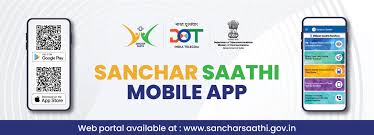
- 19 Jan 2025
In News:
In a landmark move to enhance telecom accessibility, security, and empowerment across India, the Union Minister of Communications launched a suite of citizen-focused initiatives. Key highlights of the event included the launch of the Sanchar Saathi Mobile App, National Broadband Mission (NBM) 2.0 and the inauguration of the Intra Circle Roaming facility at DBN Funded 4G Mobile Sites.
Sanchar Saathi Mobile App
- Launched by: Department of Telecommunications (DoT), Ministry of Communications.
- Platforms: Available on Android and iOS.
- Objective: Strengthen telecom security, empower citizens, and combat telecom fraud.
- Key Features:
- Chakshu (SFC): Report suspected fraud communications (calls/SMS).
- Know Your Mobile Connections: Identify and manage all mobile numbers issued in one’s name.
- Block Lost/Stolen Devices: Swiftly block, trace, and recover lost/stolen mobile phones.
- Verify Handset Genuineness: Confirm the authenticity of mobile handsets before purchase.
Impact so far (via Sanchar Saathi Portal, launched May 2023):
- 2.75 crore fraudulent connections disconnected.
- 25+ lakh lost/stolen devices blocked.
- 12.38 lakh WhatsApp accounts linked to cybercrimes disengaged.
- 11.6 lakh mule bank accounts frozen.
- 90% spoofed international calls blocked within 2 months of new prevention system.
National Broadband Mission (NBM) 2.0
- Launched by: Union Minister of Communications, builds upon NBM 1.0 (2019–2024).
- Part of: National Digital Communications Policy, 2018.
- Aim: Digitally empower citizens and bridge the digital divide to realize the vision of Viksit Bharat by 2047.
Key Targets (by 2030):
- 2.70 lakh villages to be connected with OFC (from ~50,000 now).
- 90% broadband connectivity to anchor institutions (schools, PHCs, Panchayats, Anganwadis).
- Fixed broadband speed: Increase national average from 63.55 Mbps (2024) to 100 Mbps.
- Right of Way (RoW) disposal time: Reduce from 60 days to 30 days.
- Rural internet subscribers: Increase from 45 to 60 per 100 population.
- 30% of mobile towers to be powered by sustainable energy.
- 100% mapping of PSU fiber networks on PM GatiShakti National Master Plan by 2026.
- Enhanced use of “Call Before u Dig (CBuD)” app to protect underground telecom infrastructure.
- Facilitate 5G rollout, and prepare infrastructure for 6G and common telecom ducts in all linear projects.
- Leverage power sector (e.g. Optical Ground Wire - OPGW) for broadband in remote/hilly areas.
Intra Circle Roaming (ICR) at DBN-Funded 4G Sites
- Launched by: Ministry of Communications.
- Implemented under: Digital Bharat Nidhi (DBN), formerly USOF.
- Objective: Allow subscribers of multiple telecom service providers (TSPs) (e.g., BSNL, Airtel, Reliance) to access 4G services from a single DBN-funded tower.
- Impact:
- Eliminates need for duplicate towers.
- Covers 27,000+ towers across 35,400 remote villages.
- Enhances user choice, reduces cost, and ensures efficient infrastructure use.
Nigeria admitted as BRICS Partner Country

- 19 Jan 2025
In News:
- Nigeria has been admitted as the 9th "Partner Country" of the BRICS grouping under Brazil’s presidency in 2025.
- Other BRICS partner countries include Belarus, Bolivia, Cuba, Kazakhstan, Malaysia, Thailand, Uganda, and Uzbekistan.
- A "partner country" in BRICS is allowed to attend summits, ministerial meetings, and participate in joint initiatives, but does not have formal membership or decision-making power.
About Nigeria’s Role
- Nigeria has the 6th largest population globally and the largest in Africa.
- It is the 4th largest economy in Africa, often termed the "Giant of Africa".
- Nigeria plays a significant role in South-South cooperation and reform of global governance structures, aligning with BRICS' strategic objectives.
About BRICS
- Founded: 2009 by Brazil, Russia, India, and China; South Africa joined in 2010.
- New Full Members (as of 2023): Iran, Egypt, Ethiopia, UAE, and Indonesia (effective Jan 2025).
- Membership Invitations: Saudi Arabia has been invited but not yet accepted.
- Applicants: Turkey, Azerbaijan, Malaysia have formally applied.
- Three Pillars of Cooperation:
- Political and Security
- Economic and Financial
- Cultural and People-to-People Exchanges
- Represents ~40% of global population and ~37.3% of global GDP.
India has hosted BRICS Summits in 2012 (4th), 2016 (8th), and 2021 (13th).
Bharat Ranbhoomi Darshan

- 17 Jan 2025
In News:
The Bharat Ranbhoomi Darshan initiative, launched by Defence Minister coinciding with the 77th Army Day celebrations, is a collaborative effort between the Ministry of Defence and the Ministry of Tourism.
Key Highlights:
- This initiative is designed to promote battlefield and border tourism by providing citizens with access to historically significant battlefields and military sites.
Objectives
- Promote Battlefield and Border Tourism: Encourage citizens and tourists to explore India's military history.
- Enhance Awareness: Educate visitors about India’s historic battles and military valor.
- Socio-Economic Development: Boost infrastructure, connectivity, and local economies in border regions.
Features of Bharat Ranbhoomi Darshan
- Virtual Tours and Interactive Content: The platform offers historical narratives, virtual tours, and interactive multimedia to provide a detailed account of each battlefield.
- Travel Planning Assistance: Visitors can access information regarding permits, travel routes, and accommodations.
- Integration with the Incredible India Campaign: The initiative is part of the government’s broader tourism strategy, ensuring widespread promotion.
- Collaborative Infrastructure Development: The Indian Army is working with local civil authorities to facilitate safe tourism without compromising operational preparedness.
Key Locations Covered
- Galwan Valley (Ladakh): Site of the 2020 India-China clash.
- Doklam: A tri-junction between India, Bhutan, and China.
- Line of Control (LoC) and Line of Actual Control (LAC) Sites:
- Nathu La Pass (Sikkim): Significant in the 1967 Indo-China clashes.
- Longewala (Rajasthan): Site of a key battle during the 1971 Indo-Pak war.
- Other Sites: Locations of the 1962 war with China and various Indo-Pak conflicts.
Significance
- Historical and Patriotic Engagement: Provides citizens firsthand insights into the challenges faced by soldiers in remote, strategic locations.
- Tourism Development in Border Areas: Previously restricted areas now open for visitors, leading to economic benefits for local communities.
- National Security Awareness: Encourages greater appreciation of India's defense forces and their contributions.
Implementation
The first phase of the Bharat Ranbhoomi Darshan project includes key battlefields and border sites across seven major regions. Future phases will expand coverage to additional historical military locations.
Fast Track Immigration FTI-TTP
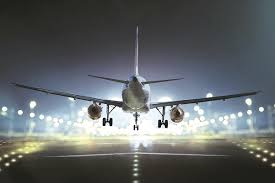
- 17 Jan 2025
In News:
The Government of India is launching the Fast Track Immigration Trusted Traveller Program (FTI-TTP) to streamline immigration at seven major airports.
Key Highlights:
- The initiative, inaugurated by Union Home Minister Amit Shah, aims to enhance the travel experience for Indian nationals and Overseas Citizen of India (OCI) cardholders.
- This comes seven months after the programme was first introduced at Indira Gandhi International (IGI) Airport, New Delhi. The airports included in this initial phase are: Mumbai, Chennai, Kolkata, Bengaluru, Hyderabad, Cochin and Ahmedabad
Objectives of FTI-TTP
- Provide seamless and secure immigration services.
- Reduce human intervention using automated e-gates.
- Align with the Viksit Bharat@2047 vision for modern infrastructure.
How the Programme Works
The FTI-TTP simplifies immigration with automated e-gates. Travellers must complete a one-time online registration to enroll. The process involves:
- Online Registration: Submit personal details and upload necessary documents via the official portal (https://ftittp.mha.gov.in).
- Biometric Submission: Fingerprints and facial images must be submitted at an airport or Foreigners Regional Registration Office (FRRO).
- Immigration Clearance via E-Gates:
- Passengers scan their boarding passes and passports at e-gates.
- Biometrics are automatically verified.
- Upon authentication, the e-gate opens, granting clearance.
Validity: Registration is valid for five years or until the registered passport expires, whichever comes first.
Who is Eligible?
The first phase of the FTI-TTP is open to:
- Indian nationals.
- OCI cardholders aged between 12 and 70 years.
- Children aged 12-18 can register using their parents’ email/phone number.
- ECR (Emigration Check Required) passport holders are not eligible.
Documents Required for Registration
- Passport-sized photograph (as per Indian passport specifications).
- Scanned copy of passport (front and back pages).
- Proof of current address.
- OCI card details (if applicable).
Key Points to Note
- Registration may take up to a month due to verification by field agencies.
- Applications with incorrect or outdated information may be rejected.
- In case of passport loss or expiry, travellers must reapply and submit fresh biometrics.
- Passports must have at least six months’ validity at the time of applying.
- For support, travellers can reach out via email at india.ftittp-boi@mha.gov.in.
Implementation Phases
The FTI-TTP will be implemented in two phases:
- Phase 1: Covers Indian citizens and OCI cardholders.
- Phase 2: Will extend to foreign travellers.
- The programme will be expanded to 21 major airports across the country.
Comparison with Similar Global Programmes
Several countries have implemented similar fast-track immigration systems:
United States: Global Entry
- Introduced in 2008.
- Offers self-service kiosks for pre-approved travellers.
- Requires background checks and in-person interviews.
United Kingdom: Registered Traveller Service
- Launched in 2015.
- Allows frequent visitors from select countries, including India, to use e-gates.
- Requires visa eligibility or multiple prior visits.
European Union: Smart Borders Initiative
- Implemented in 2016, with full deployment expected by 2024.
- Pre-registers biometric data for faster processing at Schengen Area borders.
Australia: SmartGate
- Started in 2007 for Australian and New Zealand passport holders.
- Uses automated kiosks for identity verification via passport scans and photos.
Saudi Arabia: Smart Travel System
- Launched in 2019.
- Uses automated e-gates for faster immigration clearance.
- Expanding as part of Vision 2030 to improve travel experience, particularly for Hajj pilgrims.
QS World Future Skills Index 2025
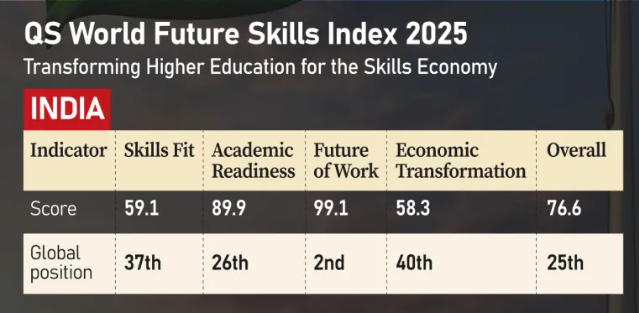
- 17 Jan 2025
In News:
The QS World Future Skills Index 2025, released by Quacquarelli Symonds (QS), evaluates countries' readiness to meet the evolving demands of the global job market. It assesses nations based on skill development, education, and economic transformation, highlighting their preparedness for emerging technologies, artificial intelligence (AI), and sustainability.
India’s Performance in the Index:
- Overall Ranking: India is ranked 25th globally, categorizing it as a “Future Skills Contender.”
- Future of Work Category: India ranked 2nd, only behind the United States, reflecting its preparedness for AI, digital, and green jobs.
- Economic Transformation: India scored 58.3, the lowest among the top 30 countries, reflecting challenges in innovation and sustainability.
- Skills Fit: India received a score of 59.1, the weakest among the top 30 nations, indicating a gap between workforce skills and industry requirements.
- Academic Readiness: India’s education system is struggling to keep pace with employer demands, necessitating curriculum reforms and stronger academia-industry collaboration.
Key Findings from the Report:
Strengths:
- Digital Readiness: India has demonstrated strong capabilities in integrating digital talent into the workforce.
- Youth Advantage: A large, young population provides a demographic dividend for sustained economic growth.
- Startup Ecosystem: India’s startup culture and government initiatives support technological advancement and innovation.
Weaknesses:
- Higher Education-Industry Gap: Mismatch between education and employer requirements, particularly in AI, green skills, and entrepreneurship.
- Limited R&D Investment: India’s research and development spending is 0.6% of GDP, far below the global average of 2.7%.
- Low Innovation in Sustainability: India scored 15.6 out of 100, ranking poorly in future-oriented innovation for sustainability.
Challenges and Concerns:
- Skilled Workforce Shortage: The National Skill Development Corporation (NSDC) estimates a 29 million skilled workforce gap in critical sectors such as healthcare, semiconductor manufacturing, and AI.
- Low Employability Rates: Only 25% of management professionals, 20% of engineers, and 10% of graduates meet global employability standards.
- Higher Education Accessibility: Many students face difficulties in accessing quality tertiary education, particularly in skill-intensive fields.
Opportunities for Growth:
- Leverage Demographic Dividend: India can capitalize on its young workforce to dominate skill-based industries while other nations struggle with aging populations.
- Policy Support:
- National Education Policy (NEP) 2020: Focuses on modular education and reskilling initiatives.
- ULLAS Program: Aims to expand lifelong learning and skill development.
- Technological Integration: Advancements in AI and digital learning can help modernize academic curricula and improve job readiness.
Recommendations for Improvement:
- Enhancing Academia-Industry Collaboration: Universities should prioritize problem-solving, entrepreneurship, and creativity to align education with employer needs.
- Increasing R&D Investment: Raising spending on research and development to promote innovation and sustainability.
- Expanding Access to Education: Bridging regional disparities in tertiary education through flexible and modular learning.
- Strengthening Policy Implementation: Ensuring effective execution of skilling programs to reduce the workforce-employability gap.
Eighth Pay Commission

- 17 Jan 2025
In News:
The Union government has approved the constitution of the Eighth Pay Commission, benefiting 50 lakh central government employees and 65 lakh pensioners, including serving and retired defence personnel. The decision, taken ahead of the Delhi Assembly elections, aims to address long-standing demands from trade unions and employee organizations.
Key Features of the 8th Pay Commission
- Early Constitution: Although the Seventh Pay Commission's term ends in 2026, the early establishment of the Eighth Pay Commission ensures timely recommendations and implementation.
- Composition: The commission will have a Chairperson and two members, typically led by a retired Supreme Court judge.
- Terms of Reference (ToR):
- Revision of Pay: Recommend updates to salary structures and allowances.
- Addressing Pay Disparities: Resolve wage differences across various cadres.
- Market Parity: Align pay structures with industry standards.
- Pension and Retirement Benefits: Improve pension schemes and adjust them for inflation.
- Economic Impact Analysis: Assess how salary hikes contribute to economic growth.
- Stakeholder Consultations: Engage with governments and other stakeholders before finalizing recommendations.
Economic Implications of the 8th Pay Commission
- Employee Well-being: Higher wages will enhance the quality of life for government employees.
- Boost to Consumption: Increased salaries are expected to stimulate demand and support economic expansion.
- Ripple Effect on PSUs & States: Many public sector undertakings and state governments follow the central pay commission’s recommendations, potentially leading to wider economic benefits.
- Fiscal Considerations: The implementation of the Seventh Pay Commission in 2016-17 led to an expenditure increase of ?1 lakh crore. A similar rise in 2026-27 could impact fiscal space for capital expenditures.
Challenges and Concerns
- Implementation Delays: Past commissions have taken two years to submit recommendations, which could push implementation beyond 2027.
- Living Wage & Pension Issues: Existing formulas for minimum wage and pension calculations may need revision to reflect rising healthcare, education, and digital access costs.
- Financial Burden on the Exchequer: A significant increase in revenue expenditure could limit the government’s ability to invest in infrastructure and development projects.
Global Economic Prospects (GEP) Report 2025
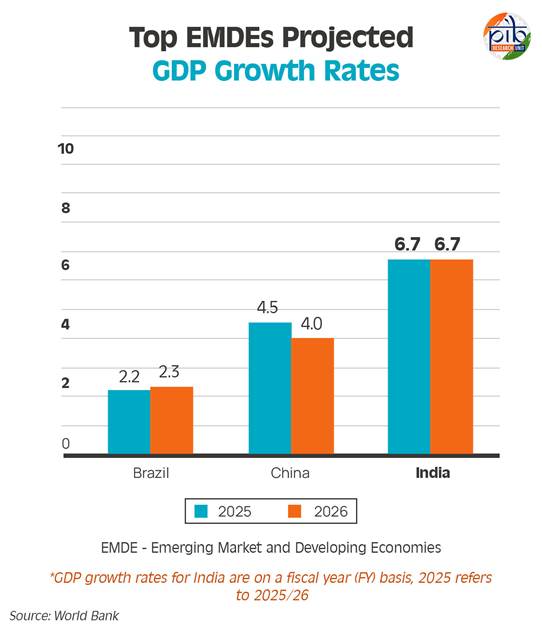
- 17 Jan 2025
In News:
The World Bank has released its Global Economic Prospects (GEP) report for 2025, a flagship biannual publication analyzing trends and projections in the global economy, with a focus on emerging markets and developing economies (EMDEs). The report highlights economic growth forecasts, trade dynamics, and the challenges and opportunities shaping the global economic landscape.
Global Economic Outlook
- The world economy is projected to expand at a steady yet subdued rate of 2.7% in both 2025 and 2026, maintaining the pace of 2024.
- Inflation, which peaked above 8% in recent years, is expected to stabilize at an average rate of 2.7% in 2025 and 2026, aligning with central bank targets.
- Despite growth, the global economy remains 0.4 percentage points below the 2010-2019 average, raising concerns about its ability to tackle poverty effectively.
Challenges and Risks
- Trade Restrictions: New trade restrictions imposed in 2024 were five times higher than the 2010-19 average, contributing to a slowdown in global trade and economic growth.
- Rising Protectionism: Increased fragmentation in global trade policies is limiting exports and hampering economic integration.
- Policy Uncertainty: Adverse policy shifts, sluggish progress in reducing inflation, and weaker performance in major economies pose downside risks to global recovery.
- Debt and Investment Concerns: Developing economies are experiencing sluggish investment growth and high debt levels, exacerbated by climate change-related costs.
Emerging Markets and Developing Economies (EMDEs)
- EMDEs have significantly evolved since 2000, now contributing about 45% of global GDP, compared to 25% at the start of the century.
- The three largest EMDEs—India, China, and Brazil—have accounted for approximately 60% of annual global growth over the past two decades.
- Growth in low- and middle-income developing countries is expected at 4.1% in 2025 and 4% in 2026, with a notable slowdown compared to the early 2000s.
- Low-income countries are projected to rebound to 5.7% in 2025 and 5.9% in 2026, aided by easing conflicts in some regions.
- The world's poorest nations, with annual per capita incomes below USD 1,145, recorded growth of 3.6% in 2024, impacted by conflicts in regions like Gaza and Sudan, alongside lingering effects of COVID-19 and geopolitical tensions.
India-Specific Highlights
- Fastest-Growing Major Economy: India is expected to maintain its position as the world’s fastest-growing major economy, with a projected growth rate of 6.7% in both 2025 and 2026.
- Sectoral Growth: The services sector will remain robust, while manufacturing activity is expected to strengthen.
- Investment Growth: Supported by rising private investment, improved corporate balance sheets, and favorable financing conditions, investment growth in India is expected to remain steady.
- Key Growth Drivers:
- Infrastructure development under the PM GatiShakti National Master Plan.
- Innovation-driven initiatives like Startup India and the Production Linked Incentive (PLI) Scheme.
- Expansion of the digital economy and financial inclusion efforts.
- Rural Demand and Consumption: Growth in rural demand and a recovery in farm production have bolstered consumer spending, although urban consumption remains affected by inflation and slow credit growth.
Human Papillomavirus (HPV)

- 16 Jan 2025
In News:
January is Cervical Cancer Awareness Month, and the focus on this month underscores the critical importance of preventing cervical cancer, a disease responsible for significant mortality among women in India. At the heart of this prevention is the Human Papillomavirus (HPV) vaccine, which is recognized as the most effective measure to prevent cervical cancer and other HPV-related cancers. Despite its potential, the HPV vaccine remains out of reach for many due to its high cost and the need for greater awareness.
HPV and its Impact in India
HPV is responsible for 99.7% of cervical cancers worldwide, making it one of the primary causes of cancer in women. In India, cervical cancer is the third most common cancer among women, accounting for about 6-29% of all cancers in women. As of GLOBOCAN 2020, India alone has 20% of the global burden of cervical cancer, with over 123,000 cases and a 9.1% mortality rate.
Additionally, HPV can lead to several other cancers, including anal, vulvar, vaginal, penile, and throat cancers, making its vaccination vital for overall cancer prevention.
The HPV Vaccine: A Game-Changer
The HPV vaccine is the most effective tool to prevent infections caused by the virus and reduce the incidence of associated cancers. The vaccine works by stimulating the immune system to produce antibodies that neutralize the virus before it can cause damage. There are different types of vaccines authorized in India, including:
- Gardasil (protects against HPV types 6, 11, 16, and 18)
- Cervarix (a bivalent vaccine targeting HPV 16 and 18)
- Cervavac (India's first HPV vaccine, developed by the Serum Institute of India)
The vaccine is recommended for both males and females between 9 and 26 years, with a special focus on children aged 12 to 13 years, as the vaccine is most effective when administered before exposure to the virus. It’s also suitable for people who are immunocompromised or HIV-infected.
Challenges to HPV Vaccination in India
Despite the obvious benefits, the uptake of the HPV vaccine in India faces several barriers:
- High Costs: The price of the vaccine remains prohibitively high. For example:
- Gardasil 9 costs ?10,850 per dose.
- Gardasil 4 is priced between ?2,000 to ?4,000 per dose.
- Cervavac, the Indian-made vaccine, costs around ?2,000 per dose, which is more affordable but still out of reach for many.
- Awareness and Cultural Perceptions: There is a lack of awareness about HPV and its link to cervical cancer. Cultural factors, particularly around reproductive health, can also create reluctance to vaccinate, especially in rural or conservative areas.
- Limited Access: Currently, the vaccine is available through private practitioners and is not part of the National Immunisation Programme (NIP), limiting access to the broader population.
The Way Forward: National Immunisation and Awareness Campaigns
The National Technical Advisory Group on Immunisation (NTAGI) has recommended that the HPV vaccine be included in India’s National Immunisation Programme (NIP). This would enable broader access and affordability, especially for girls aged 9–14 years and ensure that a routine vaccination schedule is implemented at the age of 9 years. Some states like Punjab and Sikkim have already taken steps to introduce the vaccine in their state-level immunization programs.
Additionally, a nationwide HPV vaccination campaign could raise awareness about the vaccine and its benefits, helping to overcome the challenges of cost, safety concerns, and cultural perceptions. Regular cervical cancer screenings (such as Pap smears and HPV tests) should also be encouraged to identify precancerous changes early.
Cabinet Approves Establishment of ‘Third Launch Pad’ at ISRO's Sriharikota Facility
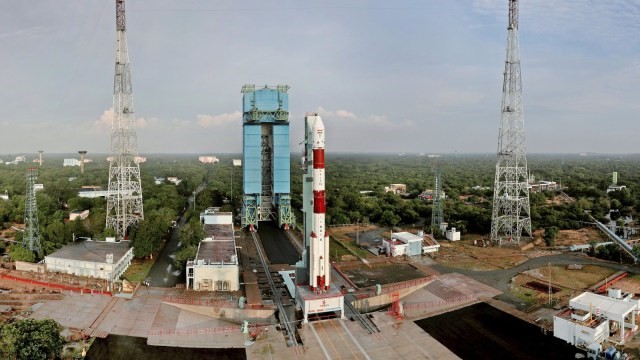
- 16 Jan 2025
In News:
The Union Cabinet, has approved the establishment of a Third Launch Pad (TLP) at the Satish Dhawan Space Centre (SDSC), located at Sriharikota, Andhra Pradesh. This project marks a significant step in enhancing India’s space capabilities and will support the Next Generation Launch Vehicles (NGLV) for ISRO’s evolving space exploration programs.
Key Features of the Third Launch Pad
The TLP will be built with an adaptable design, capable of supporting NGLV and LVM3 vehicles with semi-cryogenic propulsion. The launch pad will also serve as a standby for the Second Launch Pad (SLP) at Sriharikota. This addition will help ISRO meet its growing launch capacity needs, particularly for future human spaceflight missions and space exploration projects. It will facilitate higher launch frequencies, thus boosting the Indian space ecosystem.
Implementation Strategy and Timeline
The Third Launch Pad is planned to be developed within 48 months (4 years), with the total cost pegged at ?3984.86 Crore. The development will involve maximized industry participation and will utilize existing infrastructure at the launch complex. The project will also leverage ISRO’s experience gained from establishing the earlier launch pads.
The Importance of the Third Launch Pad
The TLP is designed to support the Next Generation Launch Vehicles (NGLV), a key part of ISRO’s vision for space exploration. The facility will not only accommodate heavier vehicles but will also ensure standby capacity for the Second Launch Pad (SLP). Its strategic location at Sriharikota ensures several advantages:
- Proximity to the Equator: This offers a substantial increase in payload capacity due to the additional push provided by the Earth's rotation.
- Safety and Accessibility: The site is free from major international maritime or airline routes, ensuring a safe flight path.
- Geographical Advantage: The launch pad is situated on the eastern coast, enabling launches in an easterly direction, maximizing the benefits of Earth’s rotational speed.
Future Plans for Indian Space Exploration
The establishment of the Third Launch Pad is crucial for the expanded vision of India’s space program, particularly in line with the Amrit Kaal period. ISRO aims to achieve ambitious milestones, such as the Bharatiya Antariksh Station (BAS) by 2035 and an Indian Crewed Lunar Landing by 2040. The NGLV will play a pivotal role in these plans, with features like:
- A three-stage vehicle and reusable first stage.
- Semi-cryogenic propulsion, using refined kerosene and liquid oxygen, which will increase payload capacity by three times at 1.5 times the cost of current vehicles.
The Role of Sriharikota in India’s Space Program
Sriharikota, the hub of ISRO’s launch operations, has been integral to India’s space exploration. Currently, the Indian Space Transportation Systems rely on two operational launch pads:
- First Launch Pad (FLP): Established over 30 years ago for PSLV and SSLV missions, FLP continues to support Polar Satellite Launch Vehicle (PSLV) and Small Satellite Launch Vehicle (SSLV) launches.
- Second Launch Pad (SLP): Built primarily for GSLV and LVM3 vehicles, SLP also serves as a standby for PSLV. Over its 20 years of operation, SLP has supported several national missions, including Chandrayaan-3, and is preparing for the Gaganyaan missions.
Does ‘Blood Money’ Have a Legal Standing?
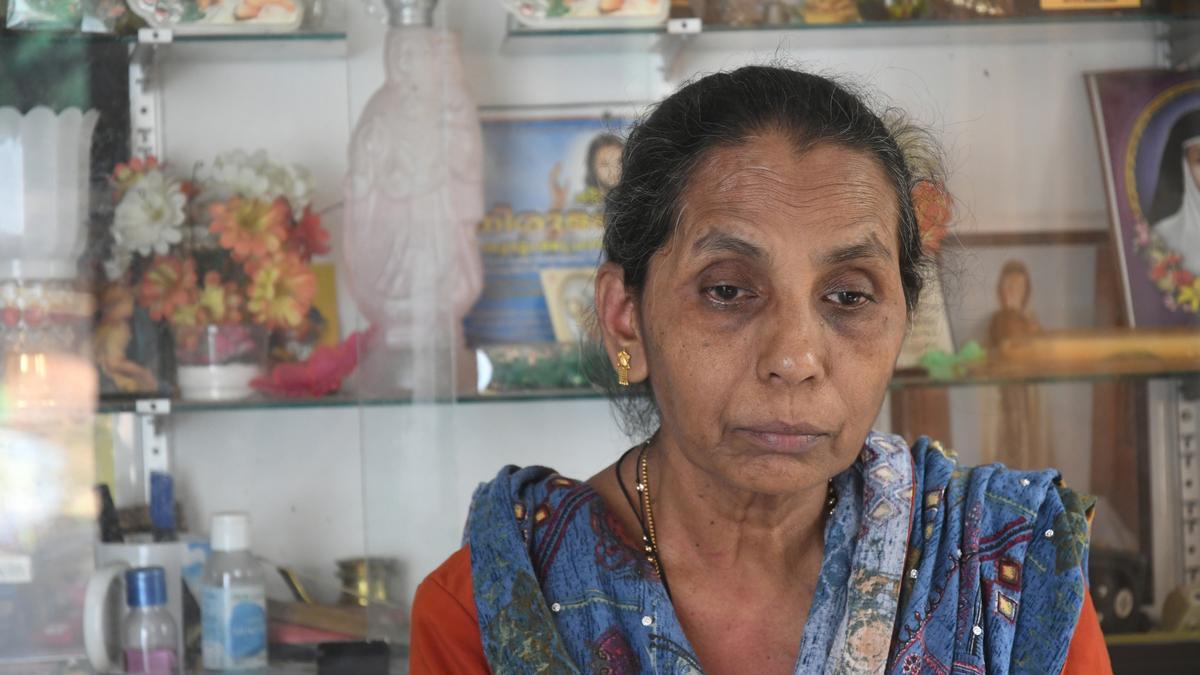
- 16 Jan 2025
In News:
The concept of ‘blood money’ has come under scrutiny recently, especially in the context of the death sentence awarded to Indian nurse Nimisha Priya from Kerala in Yemen. This case, where the focus is on monetary compensation paid to the victim’s family, has sparked renewed discussions on the practice of blood money.
What is ‘Blood Money’?
‘Blood money’ or diya is a term used in Islamic Sharia law and refers to a sum of money that the perpetrator of a crime must pay to the victim or the victim’s family, typically in cases of unintentional murder or homicide. The custom is designed to offer compensation to the family for the loss of income and alleviate their suffering, rather than placing a price on human life. This practice allows the victim’s family to forgive the accused and avoid retribution, called qisas, under the Sharia.
However, even when blood money is paid, the community or state retains the authority to impose a penalty or punishment, which could include imprisonment or other penalties, based on the seriousness of the crime.
How Does Blood Money Figure in Islamic Sharia Law?
In Islamic law, the amount of blood money varies based on several factors such as the victim’s gender, religion, and nationality. The following examples demonstrate the application of blood money in different Islamic countries:
- Saudi Arabia: In Saudi Arabia, blood money is part of traffic regulations, where the perpetrator must pay compensation to the heirs of victims who die in road accidents. While a Sharia court determines the amount of compensation, the police handle the determination of the guilty party. In workplace accidents, a special committee sets the amount. Saudi Arabia has considered reforming its laws to ensure equal compensation for men and women, Muslims and non-Muslims. However, efforts to amend the laws have not yet been fully implemented.
- Iran: In Iran, blood money differs based on the gender and religion of the victim. A woman’s compensation is typically set at half of that of a man’s. While the Supreme Court of Iran upheld a law to equalize compensation for all individuals in 2019, full implementation of the law has yet to be realized.
- Pakistan: Pakistan has incorporated provisions for diya and qisas in its legal system through the Criminal Laws (Amendment) Ordinance, 1991, aligning its practices with those of Islamic law.
- Yemen: In Yemen, parties involved can negotiate compensation, with judicial oversight ensuring fairness.
India’s Stand on ‘Diya’ and Blood Money
India does not include the provision for blood money in its formal legal framework. However, a similar concept exists in the form of plea bargaining, which allows the accused to negotiate with the prosecution in exchange for a reduced sentence or charge. Plea bargaining involves the defendant pleading guilty to a lesser offense in return for a concession, either in terms of the charges or the sentence.
Plea Bargaining in India:
Introduced under the Criminal Law (Amendment) Act, 2005, plea bargaining was added to the Code of Criminal Procedure, 1973. While it bears some resemblance to blood money in that it allows for compensation to the victim, it has significant limitations:
- It can only be applied to crimes punishable by imprisonment of less than seven years.
- It is not applicable to heinous crimes such as murder or rape, or offenses involving women or children under 14.
- The accused must voluntarily agree to plead guilty, with no coercion involved.
While plea bargaining may include compensation under Section 265E of the Code, discussions continue to refine this provision to make it more inclusive, similar to the reforms seen in Islamic countries regarding blood money.
Historical Practices Similar to Blood Money
Throughout history, various cultures have had practices similar to blood money. These include:
- Brehon Law (Ireland): In the 7th century, Brehon law established the concept of Éraic (body price) and Log nEnech (honor price). These were compensation systems that allowed for the amicable resolution of crimes, avoiding capital punishment.
- Galanas (Wales): Galanas in Welsh law determined compensation based on the victim's social status, where a blood fine was required in cases of murder, unless the killing was justified.
- Wergeld (Germany): The Wergeld system in early medieval Germany required compensation for homicide or grave offenses, often in monetary terms.
- Other Medieval States: Several medieval states established a standard payment for the victims’ families in the event of homicide or serious crimes, much like blood money.
Cases of Indians Pardoned with Blood Money
India has witnessed instances where blood money has been invoked for Indian nationals facing death sentences abroad:
- Arjunan Athimuthu (Kuwait, 2019): Arjunan’s death sentence was commuted to life imprisonment after his family paid ?30 lakh in blood money.
- Abdul Rahim (Saudi Arabia): Abdul Rahim, convicted for the murder of a Saudi boy in 2006, was pardoned after ?34 crore in blood money was paid. However, he has not been released from prison yet.
- UAE Cases:
- In 2017, 10 Indians were pardoned after paying 200,000 dirhams as blood money.
In 2009, 17 Indians on death row for the murder of a Pakistani national were pardoned after a blood money amount of nearly ?4 crore was paid.
US AI Hardware Export Restrictions and Impact on India
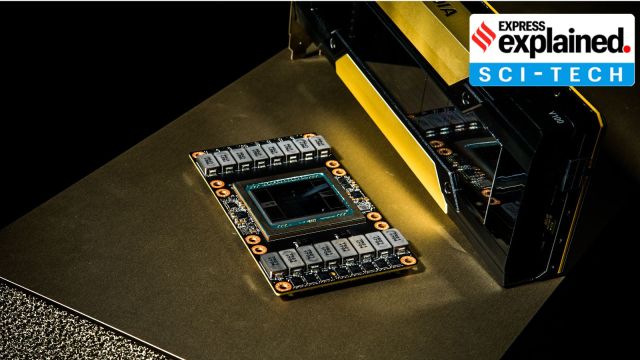
- 16 Jan 2025
In News:
Days before demitting office, the Joe Biden administration has released an expansive regulatory framework on the export of artificial intelligence (AI) hardware such as graphics processing units (GPUs), which could have far-reaching consequences for India’s AI ambitions.
Three-Tier Framework for AI Hardware Export Restrictions
- Tier 1: Closest US Allies
- Countries: Australia, Belgium, Canada, South Korea, UK, etc.
- No restrictions on computing power deployment.
- Minimal security requirements.
- Impact: Free access to AI technology for these nations.
- Tier 2: Majority of Countries (Including India)
- Countries: India, Brazil, South Africa, etc.
- Restrictions: Limited to importing approximately 50,000 advanced AI chips (around $1 billion) through 2027.
- Potential to Double Cap: If countries sign agreements to uphold strict security standards.
- Impact on India:
- Short-Term: Likely to fulfill current demand for 10,000 GPUs for the IndiaAI Mission.
- Long-Term: Challenges in scaling AI infrastructure, with possible delays in large AI data centers and difficulty acquiring large-scale GPUs.
- Tier 3: Countries of Concern (Restricted Nations)
- Countries: Russia, China, North Korea, Iran, etc.
- No Access to US AI Technology: Nearly total prohibition of AI tech exports.
Special Provisions for India and China
- General Validated End User (GVEU) status for India and China:
- India: Authorisation for civilian and military use, excluding nuclear applications.
- China: Only civilian use permitted under similar conditions.
Why the US Imposed These Restrictions?
- National Security: Prevent adversaries (China, Iran, Russia) from acquiring advanced AI technologies.
- US Technological Leadership: To protect US AI leadership and prevent loss of competitive edge.
- Trusted Ecosystem: Build secure and trusted AI environments for allied nations.
Impact on India
- Short-Term:
- IndiaAI Mission: Current procurement of 10,000 GPUs unlikely to be affected.
- Subsidized GPUs: Available for startups, academia, and researchers.
- Long-Term Concerns:
- Licensing Uncertainties: Possible delays in large-scale AI deployments and AI data centers.
- Impact on Large Firms: Companies like Reliance and Yotta may face challenges scaling up AI compute infrastructure.
- National AI Mission Challenges: Difficulty in acquiring enough GPUs for large-scale AI projects beyond 2027.
- Strategic Leverage: US could use AI export restrictions to negotiate trade deals or tariff adjustments.
Nvidia’s Criticism of the AI Diffusion Rules
- Overreach and Bureaucratic: Nvidia criticized the 200+ page regulatory framework as excessive, secretive, and bureaucratic.
- Harming US Competitiveness: Claims that the rules would hinder US innovation and global leadership, weakening the competitiveness of the US semiconductor and software industries.
- Contrast with Trump’s Approach: Praises the earlier Trump administration for fostering AI growth through industry competition without compromising national security.
Enforcement of the Rules
- Regulatory Control: Managed by the US Bureau of Industry and Security (BIS) under the Department of Commerce.
- Technology Access: Ensures AI chips and models do not reach adversaries or nations posing security risks.
Potential Impact on India’s AI Strategy
- AI Hardware Infrastructure: Challenges in large-scale AI hardware deployment.
- Competitive Disadvantage: Potential delays or downsizing of AI data centers could affect India’s competitiveness in AI technology.
- Strategic Partnerships: India may need to secure General National Validated End User authorizations to ensure uninterrupted access to advanced chips.
- AI Market Growth: India’s AI market projected to grow to $17 billion by 2027, with an annual growth rate of 25%-35%.
Nine Years of Startup India

- 16 Jan 2025
In News:
On January 16, 2025, India marks nine years of Startup India, a transformative journey that began in 2016. Designated as National Startup Day, this occasion celebrates the nation’s strides in fostering a robust and inclusive entrepreneurial ecosystem.
Current Status (as of Jan 2025)
Over 1.59 lakh startups recognized by DPIIT, making India the 3rd largest startup ecosystem globally.
- More than 100 unicorns (startups valued over $1 billion).
- Key hubs: Bengaluru, Hyderabad, Mumbai, Delhi-NCR; growing contribution from smaller cities.
Key Sectors
- Major sectors: Fintech, Edtech, Health-tech, E-commerce.
- Notable companies: Zomato, Nykaa, Ola exemplify India's shift from job seekers to job creators.
Key Milestones (2016–2025)
- Startups grew from around 500 in 2016 to 1.59 lakh in 2025.
- 73,151 startups with at least one-woman director as of 2024, showcasing rise in women entrepreneurship.
- Over 16.6 lakh jobs created by DPIIT-recognized startups by 2024.
Core Features of Startup India
- Ease of Doing Business: Simplified compliance, self-certification, and single-window clearances.
- Tax Benefits: Three-year tax exemptions for eligible startups.
- Funding Support: ?10,000 crore Fund of Funds for Startups (FFS) supports early-stage funding.
- Sector-Specific Policies: Policies focusing on sectors like biotechnology, agriculture, and renewable energy.
Industry-wise Jobs Created
- IT Services: 2.04 lakh jobs.
- Healthcare & Lifesciences: 1.47 lakh jobs.
- Professional & Commercial Services: 94,000 jobs.
- Total direct jobs created: 16.6 lakh (as of Oct 2024).
Flagship Schemes
- Startup India Seed Fund Scheme (SISFS).
- Credit Guarantee Scheme for Startups (CGSS).
- Fund of Funds for Startups (FFS) Scheme.
Other Key Initiatives
- Capacity Building & Handholding: Workshops for regional ecosystems, especially in non-metro cities.
- Outreach & Awareness: Initiatives to facilitate funding, incubation, and mentorship opportunities.
- Ecosystem Development: National-level events like Startup Mahakumbh to bring together key stakeholders.
- International Linkages: India’s G20 Presidency institutionalized Startup20 to enhance global collaborations.
BHASKAR Platform (Launched in Sept 2024)
- Objective: Centralize and streamline interactions within the entrepreneurial ecosystem.
- Key Features:
- Networking: Connects startups, investors, mentors, and government bodies.
- Resources: Provides quick access to essential tools and knowledge for scaling startups.
- Global Outreach: Promotes India as a global innovation hub.
Startup Mahakumbh
- 2024 Edition: Hosted 1,300 exhibitors, 48,000 visitors, and 392 speakers, including unicorn founders and policymakers.
- 2025 Edition (3-5 April, New Delhi): Theme - “Startup India @ 2047 – Unfolding the Bharat Story.”
Konkan Region’s Sada and Biodiversity
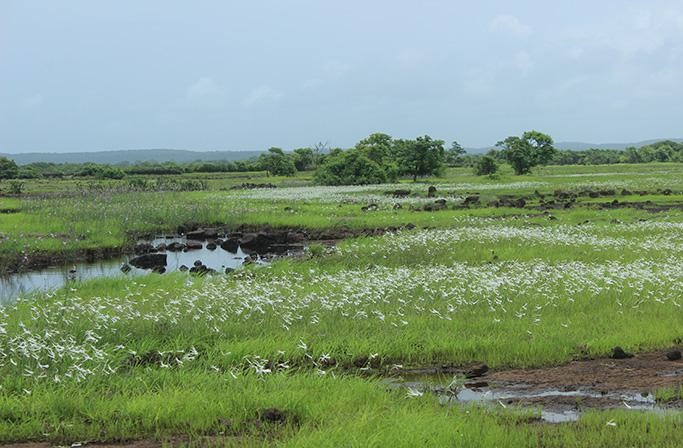
- 14 Jan 2025
In News:
A Konkan secret, the flat-top sada is a freshwater paradise.
Key Highlights:
Geography of Sada:
- The Konkan region lies between the Arabian Sea and the Western Ghats.
- Sada refers to flat-topped hills, formed by centuries of erosion, and is a prominent feature in the Ratnagiri district.
- These areas are typically barren except during the monsoon season when they come alive with flora and fauna.
Biodiversity and Ecosystem Services:
- A biodiversity survey between 2022-2024 recorded 459 plant species, with 105 being endemic to the Konkan region.
- The survey also identified 31 species of reptiles, 13 species of amphibians, 169 species of birds, and 41 species of mammals.
- These ecosystems play a vital role in water conservation. The lateritic soil layer atop the Sada acts as a catchment for rainwater, recharging the groundwater and providing freshwater to local communities year-round.
Traditional Land Use and Agriculture:
- Local Farming: During monsoons, the Sada is used by locals for growing traditional crops like rice and millets (e.g., nanchani), using sustainable farming practices without pesticides or chemical fertilizers.
- Water Management: The locals rely on open wells, springs, and perennial streams for freshwater, which are carefully maintained through cultural rituals and community hygiene practices.
Conservation and Cultural Importance:
- The region is home to geoglyphs, ancient artworks estimated to be 10,000 years old, adding to its cultural and historical significance.
- Waterbodies on the Sada serve as habitats for species like the Indian flapshell turtle (Lissemys punctata) and provide water for other wildlife, including leopards, jackals, hyenas, barking deer, and migratory birds.
Environmental Threats:
- Land-use Change: Increasing conversion of open land and croplands into orchards and residential areas, along with various developmental projects, threatens the region's biodiversity.
- Mining: Extraction of laterite stones for construction purposes is another environmental risk.
- Wasteland Classification: The region is often classified as a ‘wasteland’ in the Wasteland Atlas, further complicating conservation efforts.
Israel-Hamas Ceasefire and Hostage Release Deal

- 14 Jan 2025
In News:
Israel and Hamas have agreed on a Gaza ceasefire and hostage release deal after 15 months of war.
Key Highlights:
Ceasefire Agreement Details:
- Location: The deal was brokered in Doha, Qatar.
- Approval Process: The deal must be approved by Israel’s Cabinet to take effect.
- Mediators: The agreement was negotiated by Qatar, Egypt, and the United States, with their involvement ensuring the implementation of the deal.
Phases of the Deal:
- First Phase (42 Days):
- Release of 33 hostages by Hamas, including women, children, and elderly people.
- Hostage Exchange: Hostages will be exchanged for Palestinian prisoners in Israeli jails.
- Gaza Ceasefire and Withdrawal: Israeli forces will gradually withdraw from Central Gaza and move to the borders.
- Return of Displaced Palestinians: Displaced Palestinians will be allowed to return to Northern Gaza.
- Humanitarian Aid: 600 humanitarian aid trucks will be allowed into Gaza daily.
- Second Phase:
- Hostage Release: Negotiations will begin for the release of remaining hostages.
- Full Israeli Troop Withdrawal: Israel will fully withdraw its forces.
- Third Phase:
- Reconstruction of Gaza: Overseen by Egypt, Qatar, and the United Nations.
- Reopening of Border Crossings: For movement in and out of Gaza.
- Return of Hostage Bodies: Return of any bodies of hostages who died.
Background of the Israel-Hamas Conflict:
- Start: On October 7, 2023, Hamas launched an attack on Israel, called Operation Al-Aqsa Flood, causing significant casualties.
- Israeli Response: Israel launched Operation Iron Sword in retaliation.
- Casualties: The conflict resulted in 46,707 Palestinian deaths, mostly civilians, and 1,210 Israeli deaths.
About Gaza Strip:
- Location: A Palestinian enclave on the Mediterranean Sea, bordered by Israel and Egypt.
- Administration: The Gaza Strip is governed by Hamas since 2006.
- Movement Restrictions: Israel controls air space and shoreline, imposing restrictions. Egypt controls one border and also restricts movement.
Gaza Truce Deal:
- Nature: A proposed ceasefire to end the ongoing conflict.
- Primary Parties: Israel and Hamas.
- Supporting Nations: United States, Qatar, and Egypt.
- Significance:
- Aims to stop fighting and address the humanitarian crisis in Gaza.
- Potential to influence regional stability and Israeli politics.
- Marks an important moment in U.S. diplomacy under the Biden administration.
Nag Mark-2
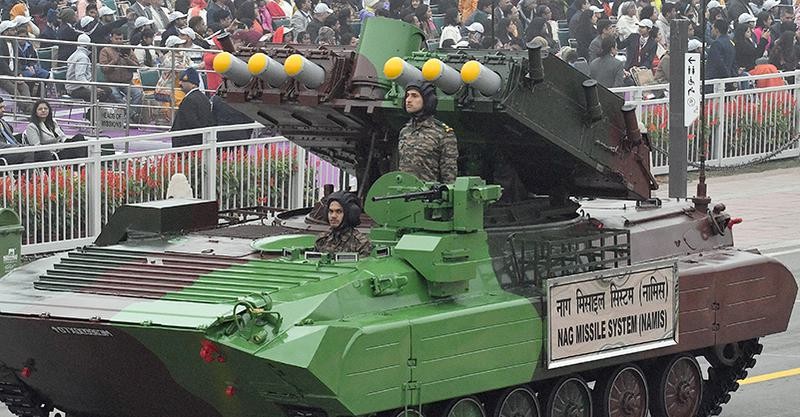
- 14 Jan 2025
In News:
The Defence Research and Development Organisation (DRDO) successfully conducted field evaluation trials of India's indigenous Anti-Tank Missile - Nag Mark 2 at the Pokhran Field Range in Rajasthan.
Overview of Nag Mk-2:
- Type: Third-generation, fire-and-forget anti-tank guided missile (ATGM).
- Development: Indigenous development by Defence Research and Development Organisation (DRDO) under the Integrated Guided Missile Development Programme (IGMDP).
- Functionality: Designed to neutralize modern armored threats, including those with Explosive Reactive Armour (ERA), using advanced fire-and-forget technology.
Technological Features:
- Fire-and-Forget Technology: Operators lock onto targets before launch, allowing the missile to autonomously track and engage targets, ensuring precision strikes.
- Lock-on After Launch: The missile can lock onto the target post-launch, providing flexibility in complex battlefield environments.
- Advanced Guidance System: Equipped with Imaging Infrared (IIR) seekers for enhanced accuracy, both during the day and at night.
Performance and Range:
- Effective Range: The missile has a range of 7 to 10 kilometers, a significant improvement over its predecessor, Nag Mk-1, which had a range of only 4 kilometers.
- Test Trials: Successfully destroyed all targets at both maximum and minimum ranges during the field evaluation trials at Pokhran Field Range, Rajasthan.
- Attack Mode: Includes a top-attack capability to target the vulnerable upper surfaces of armored vehicles, enhancing its effectiveness.
Platform and Integration:
- Launch Platform: The missile is launched from the NAMICA (Nag Missile Carrier) Version 2, a tank destroyer vehicle used by the Indian Army to launch anti-tank missiles.
- Versatility: Designed for integration with multiple platforms, enhancing operational flexibility in different combat scenarios.
Strategic and Operational Significance:
- Indigenous Defence Capability: Reduces India's dependence on foreign weapons systems, strengthening self-reliance in defense technology.
- Enhanced Battlefield Readiness: Provides the Indian Army with a cutting-edge weapon to counter modern armored vehicles, improving tactical advantages.
- Operational Effectiveness: The missile’s precision and ability to neutralize targets with minimal collateral damage make it an essential tool in modern warfare.
- Strategic Deterrence: Demonstrates India’s technological advancements in missile systems, signaling strength and deterrence to adversaries.
Bharat Cleantech Manufacturing Platform
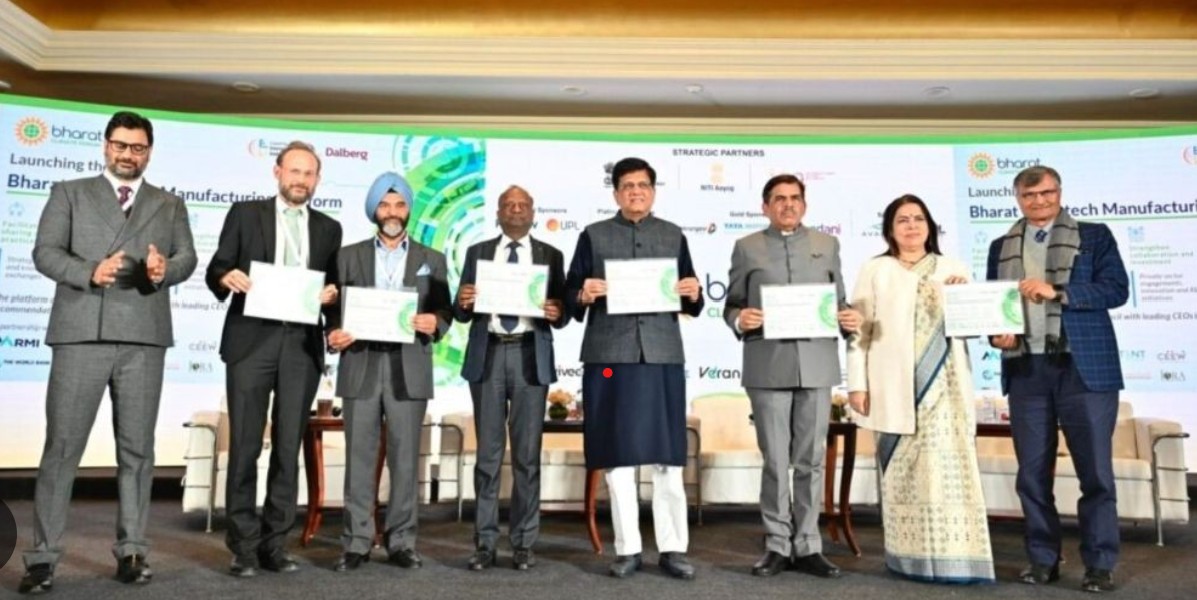
- 14 Jan 2025
In News:
Union Minister of Commerce & Industry Shri Piyush Goyal launches Bharat Cleantech Manufacturing Platform.
Bharat Cleantech Manufacturing Platform:
- Objective: Strengthen India's cleantech value chains, especially in solar, wind, hydrogen, and battery storage sectors.
- Platform Features:
- Aims to promote collaboration, co-innovation, and knowledge-sharing among Indian firms.
- Focus on scaling up manufacturing, sharing ideas, technologies, and resources.
- Acts as a financing platform for the cleantech sector.
- Designed to position India as a global leader in sustainability and cleantech innovation.
India's Clean Energy Commitment:
- Target: 500 GW of clean energy capacity by 2030.
- India has been a front-runner in fulfilling its Nationally Determined Contributions (NDCs) under the Paris Agreement and UNFCCC.
- Early Achievement: India achieved its 2022 renewable energy target of 200 GW, 8 years ahead of schedule.
- Largest Interconnected Grid: India boasts the world’s largest interconnected power grid, enhancing its renewable energy distribution capacity.
- Gujarat is a pioneer in solar power adoption in India.
Union Minister Shri Piyush Goyal's Views:
- On Product-Linked Incentives (PLIs):
- PLIs and subsidies are seen as short-term aids; long-term growth of the clean energy sector depends on it becoming self-sustaining.
- Urged Indian firms to innovate and scale up manufacturing within the country.
- On Clean Energy and Sustainability:
- Stressed the importance of innovation and collaboration to achieve sustainability goals.
- India aims to attract international investors by creating a compelling business case for cleantech investments.
- 3S Approach (Speed, Scale, and Skill): Key to implementing India's renewable energy program, emphasizing rapid deployment, large-scale adoption, and skill development in the sector.
Bharat Climate Forum 2025:
- Event Objective: A platform for policymakers, industry leaders, and stakeholders to discuss climate action, clean energy, and India’s role in global climate goals.
- Key Focus Areas:
- Aligning India’s clean energy initiatives with global climate goals (UNFCCC, Paris Agreement).
- Emphasizing India’s early achievements in clean energy adoption.
- Promoting sustainable development and clean energy solutions.
India's Performance in Renewable Energy:
- India’s progress has been commendable in meeting its climate targets and setting up clean energy capacity ahead of schedule.
- The government’s initiatives, led by Prime Minister Narendra Modi, have made solar power affordable and scalable through transparency in auctions, competitive bidding, and speed in project implementation.
World’s First Cryo-Born Baby Corals
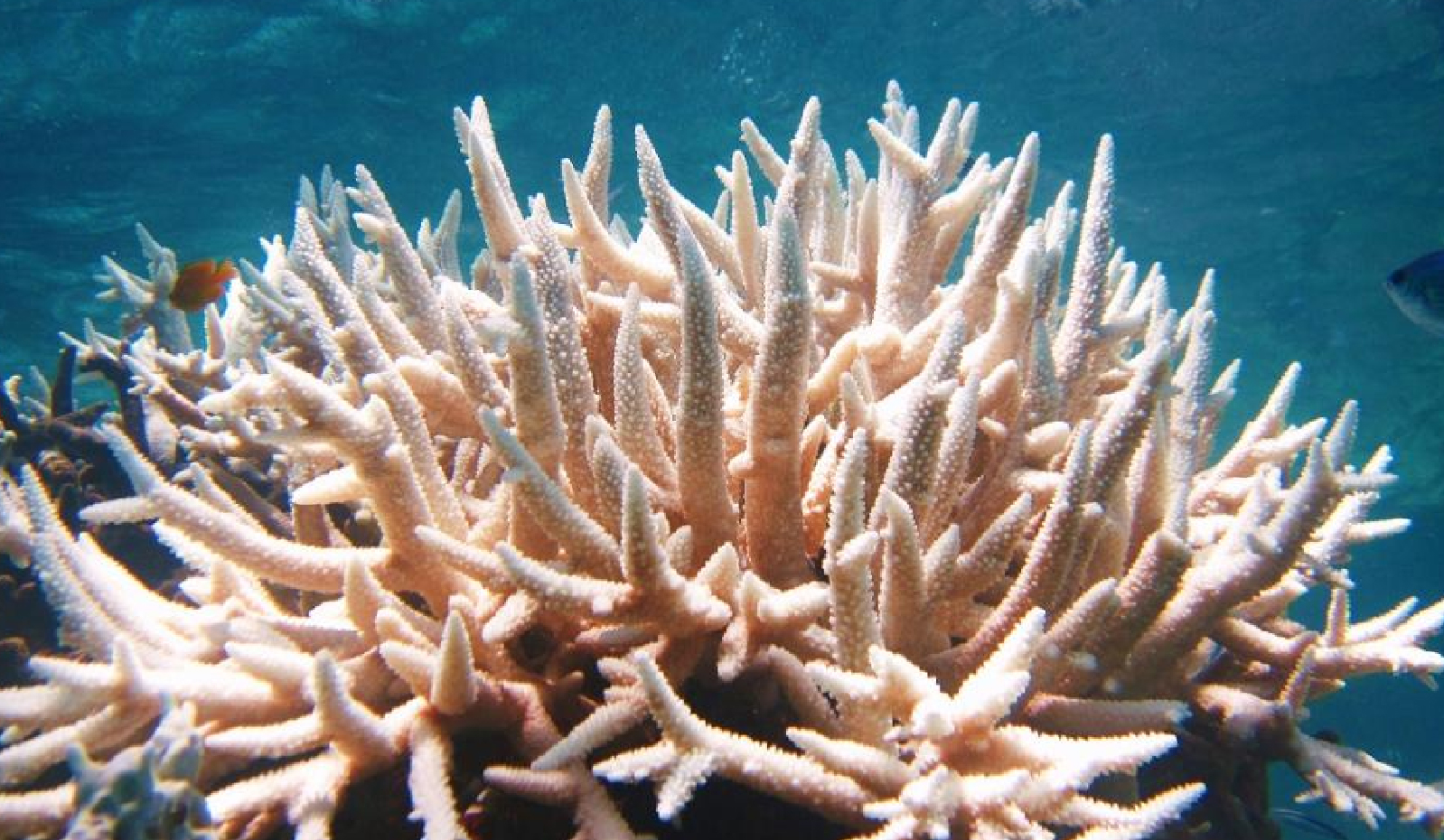
- 13 Jan 2025
In News:
World’s First Cryo-Born Baby Corals Successfully Settled on the Great Barrier Reef.
Introduction to Cryo-Born Corals
- Cryo-born corals are created using cryopreservation techniques, which involve freezing coral cells and tissues at very low temperatures.
- The process preserves coral cells by preventing the formation of ice crystals that would otherwise damage them.
- Cryopreservation involves adding cryoprotectants to remove water from cells, enabling their survival during freezing and thawing.
Significance of the Breakthrough
- Climate Change Resilience: The initiative aims to create heat-tolerant corals, which are crucial in combating the impact of rising ocean temperatures due to climate change.
- Selective Breeding Advantage: Cryopreservation allows for controlled breeding and bypasses the limitations of natural coral spawning, which occurs only once a year. This enables multiple reproduction cycles without disturbing wild populations.
The Process of Cryo-Born Coral Production
- Sperm Collection: During coral spawning events, sperm from various coral species is collected and frozen at -196°C using liquid nitrogen, halting metabolic processes.
- Coral Egg Fertilization: Cryopreserved sperm is used to fertilize fresh coral eggs, which are grown in a specialized research facility called the National Sea Simulator.
- Coral Cradles: After growth, the cryo-born corals are carefully transported and settled into specially designed "coral cradles" placed in the Great Barrier Reef, where their growth is monitored during their critical first year.
Importance of Cryo-Born Corals in Reef Restoration
- The primary aim is to introduce millions of heat-tolerant corals annually to restore reefs affected by climate change.
- The Taronga CryoDiversity Bank houses the world’s largest frozen coral sperm collection from 32 coral species, collected annually since 2011, providing a resource for future restoration efforts.
Coral Reefs: An Overview
- Corals are marine invertebrates from the class Anthozoa, phylum Cnidaria.
- Reefs are built by colonies of coral polyps that secrete limestone skeletons and rely on symbiotic algae (zooxanthellae) for nutrition.
- Coral reefs are typically found in shallow, sunlit waters with a temperature range of 16-32°C and depths less than 50 meters.
Global and Indian Coral Conservation Efforts
- India:
- The National Committee on Wetlands, Mangroves, and Coral Reefs (1986) advises on conservation measures.
- The Environment (Protection) Act (1986) prohibits the use of coral and sand in construction.
- Zoological Survey of India (ZSI) uses Biorock technology for coral restoration.
- Global Efforts:
- CITES lists coral species in Appendix II, regulating coral trade.
- The World Heritage Convention designates coral reefs as protected sites.
Global Impact and Future Directions
- The innovative work by Australian scientists opens the door for large-scale restoration efforts by allowing more controlled breeding and genetic diversity, making corals more resilient to climate change.
- This breakthrough could revolutionize coral restoration, scaling up efforts to introduce millions of resilient corals to reefs worldwide, building long-term resilience against climate change.
Sovereign Artificial Intelligence
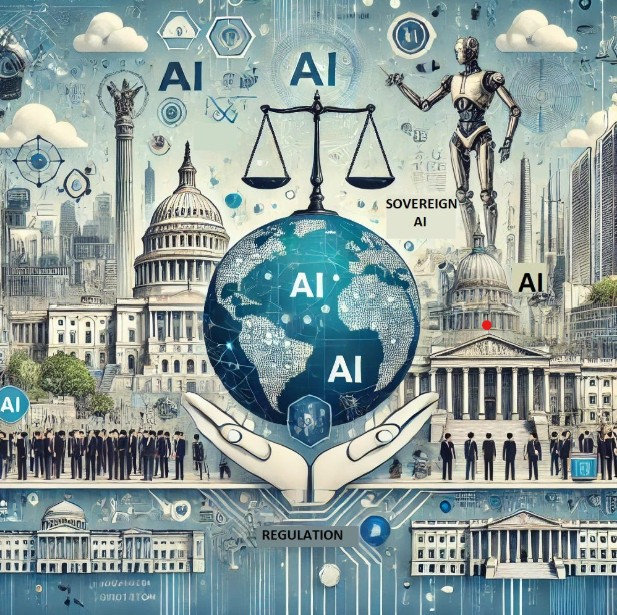
- 13 Jan 2025
In News:
- The growth of Artificial Intelligence (AI) has been remarkable in recent years. In 2018, a 340-million-parameter AI model was considered large, whereas models like ChatGPT now have 1.8 trillion parameters.
- As part of its ambition to make the digital economy worth USD 1 trillion by 2028, India is focusing on AI sovereignty and investing in semiconductors and AI technologies to achieve this goal.
What is Sovereign AI?
Definition
- Sovereign AI refers to a nation’s ability to develop, control, and deploy AI using its own resources, including infrastructure, data, workforce, and business networks.
- This involves not just developing AI models but also creating infrastructure and nurturing homegrown talent to lead AI advancements within the country.
Key Aspects of Sovereign AI
- National Control: Ensures AI technologies align with a country's laws, regulations, and ethical standards.
- Data Sovereignty: Emphasizes control of data within the country’s borders, protecting privacy, security, and national interests.
- AI in Governance: Generative AI is transforming industries, markets, and governance, with AI-powered tools assisting professionals and governments.
- Ethical Considerations: Countries define security protocols and ethical frameworks to govern the use of AI technologies.
- Strategic Autonomy: Reduces reliance on foreign technologies, encouraging domestic development in AI to achieve strategic independence.
- Economic Competitiveness: AI is crucial for industrial innovation. Without it, nations risk falling behind in the global economy.
Growth and Importance of AI
Evolution of AI Models
- In 2018, a 340-million-parameter model was considered a significant achievement.
- Today, ChatGPT uses 1.8 trillion parameters, and Google’s Gemini uses 1.5 trillion parameters. In comparison, China’s DeepSeek has a model with 240 billion parameters.
- Parameters are the internal variables of AI models, adjusted during training to improve their performance and accuracy.
Strategic Applications
- Sovereign AI plays a pivotal role in critical sectors such as:
- Defense
- Healthcare
- Transportation
- Governance
- It helps redefine industries, boost innovation, and streamline operations across various sectors.
India’s Position in Sovereign AI
AI Infrastructure Development
- Tata Group and Reliance are building AI infrastructure in India, including the development of Large Language Models (LLMs).
- India has allocated USD 1.2 billion for a sovereign AI project under the IndiaAI Mission, which includes creating an AI supercomputer with thousands of chips.
Government Initiatives
- The IndiaAI Mission is designed to boost India’s AI capabilities by building infrastructure, fostering talent, and supporting innovation within the country.
Global AI Compact
- A Global AI Compact has been proposed to ensure equitable access to AI technologies across nations.
- The compact advocates for sharing AI resources globally while promoting cooperation and addressing challenges associated with AI governance.
Pink Fire Retardant

- 13 Jan 2025
In News:
As wildfires continue to rage across Southern California, authorities are deploying pink fire retardant from aircraft to help combat the blazes. Despite its widespread use, concerns over its effectiveness and environmental risks have surfaced in recent years.
What is Pink Fire Retardant?
- Fire retardant is a chemical mixture designed to slow down or extinguish wildfires. The most commonly used product in the U.S. is Phos-Chek, a brand of retardant.
- Phos-Chek primarily contains ammonium phosphate-based slurry (salts like ammonium polyphosphate), which helps the retardant stay longer and resist evaporation, unlike water.
Purpose and Visibility
- Fire retardants are sprayed ahead of fires to coat vegetation, reducing oxygen and preventing flames from spreading.
- Color is added to the fire retardant, often bright pink, to improve visibility. This ensures firefighters can track its spread and create effective fire lines, helping protect lives and property.
Manufacturer
- Perimeter Solutions manufactures Phos-Chek, which is used for aerial fire suppression efforts.
Effectiveness of Pink Fire Retardant
Limited Effectiveness
- The use of fire retardants like Phos-Chek is not always effective across different wildfire conditions.
- Aerial retardants depend on environmental conditions like terrain, slope, and weather for optimal effectiveness.
- Researchers, including Forest Service scientists, suggest that retardant effectiveness is more limited under changing climate conditions.
- Climate change is narrowing the window of opportunity for using aerial retardants, reducing their impact.
Uncertainty in Impact
- The effectiveness of fire retardants is hard to quantify. Multiple firefighting methods are used simultaneously, making it difficult to attribute wildfire suppression success solely to the retardant.
Environmental Concerns of Pink Fire Retardant
Toxicity and Pollution
- Phos-Chek contains toxic metals such as chromium and cadmium, both of which are harmful to humans and the environment.
- Chromium and cadmium are linked to serious health issues, including cancer and liver/kidney diseases.
- Aquatic life is particularly vulnerable to these toxins, as the chemicals can enter waterways, causing extensive damage to ecosystems.
Impact on Rivers and Streams
- The use of pink fire retardant has raised concerns regarding the contamination of rivers and streams.
- A study by the University of Southern California (USC) in 2024 estimated that 850,000 pounds of toxic chemicals have been released into the environment since 2009 due to fire retardant use.
Growing Use and Pollution
- From 2009 to 2021, over 440 million gallons of retardant were applied across U.S. lands.
- During this period, an estimated 400 tons of heavy metals were introduced into the environment, further exacerbating the pollution levels.
Financial and Practical Concerns
High Cost and Inefficiency
- The cost of deploying fire retardant is significant. Aerial firefighting operations require substantial resources, including planes, helicopters, and large quantities of retardant.
- Environmental experts argue that using fire retardant from planes is ineffective and expensive, especially in light of the growing environmental concerns.
India Joins the UN-CEBD
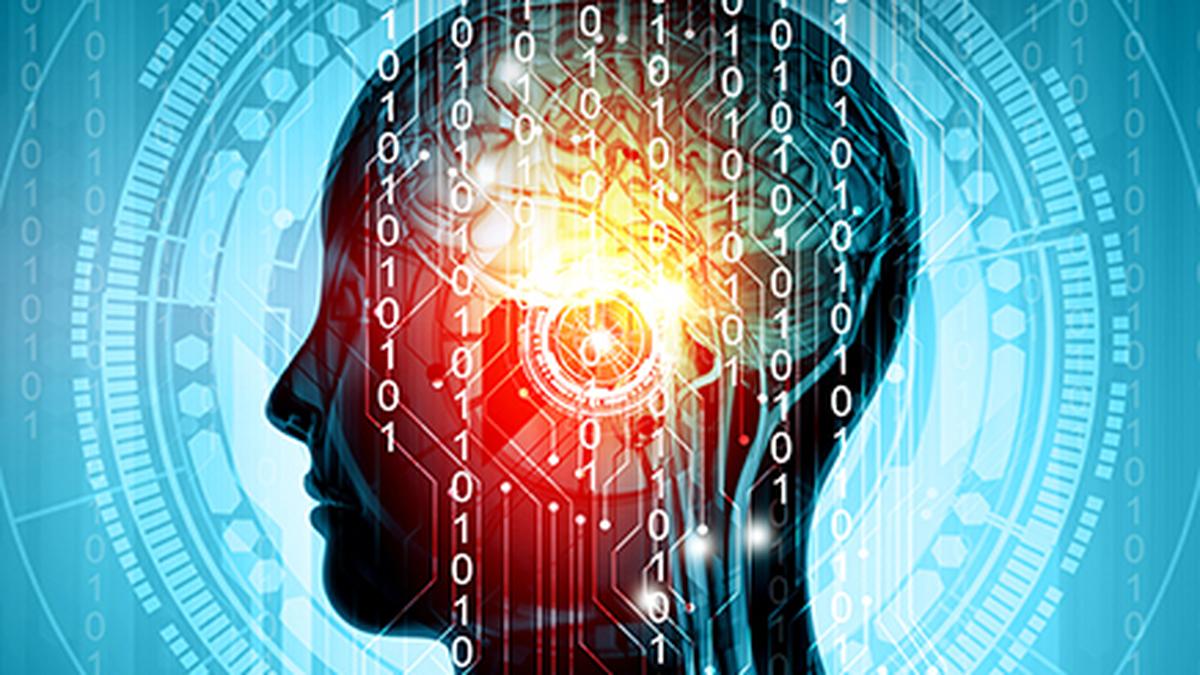
- 13 Jan 2025
In News:
- India has recently joined the United Nations Committee of Experts on Big Data and Data Science for Official Statistics (UN-CEBD), marking a significant step in strengthening its role in global statistical frameworks.
- The inclusion is a result of India's recent membership in the United Nations Statistical Council (UNSC), signaling the nation's growing influence in global data governance.
Key Highlights
- India's Growing Influence: India’s entry into the UN-CEBD highlights its growing stature in the international statistical community, emphasizing its commitment to utilizing big data and data science for informed decision-making.
- Strategic Opportunity: This membership allows India to contribute to shaping global standards in leveraging big data for official statistical purposes, especially in tracking Sustainable Development Goals (SDGs).
What is UN-CEBD?
- UN-CEBD is a specialized body under the United Nations, formed in 2014 to explore the benefits and challenges of using big data and data science to strengthen global statistical systems.
- It was established under the United Nations Statistical Commission (UNSC).
- Members: The committee consists of 31 member states (including India) and 16 international organizations.
Key Objectives
- Monitor SDGs: Use big data to track progress towards achieving the Sustainable Development Goals (SDGs).
- Address Data Challenges: Overcome challenges in utilizing non-traditional data sources, such as satellite imagery, Internet of Things (IoT), and private sector data.
- Promote Big Data Use: Encourage practical applications of big data across borders while addressing associated challenges.
Governance and Functions
- Advisory Board: Provides strategic direction, convening four times a year.
- UN Bureau: Manages day-to-day operations.
- Key Functions:
- Strategic Coordination: Vision and direction for utilizing big data in global official statistics.
- Capacity Building: Enhance capabilities through training, technical assistance, and knowledge sharing.
- Public Trust: Establish confidence in using big data for official statistics.
Big Data: Definition and Importance
What is Big Data?
- Big data refers to vast, complex datasets that cannot be processed by traditional data management systems.
- It enables enhanced decision-making and improved processes for policy formulation, product development, and governance.
India's Big Data Initiatives
- National Data & Analytics Platform (NDAP): Facilitates data-driven decision-making.
- Big Data Management Policy: Defines strategies for managing large datasets within government agencies.
- National Data Warehouse on Official Statistics: Centralizes official data for better access and analysis.
The 6Vs of Big Data
- Volume: Large amounts of data.
- Velocity: Speed of data generation and processing.
- Variety: Different types of data.
- Veracity: Accuracy of data.
- Value: Significance of the data.
- Variability: Fluctuations in data.
India’s Role in the UN-CEBD
Contribution to Global Standards
- India's initiatives such as the Data Innovation Lab and the use of satellite imagery and machine learning will be shared with other members, fostering global collaboration in statistical innovations.
- India will contribute to shaping international standards for the use of big data in monitoring SDGs.
Enhancing Statistical Processes
- Modernization of Data: India aims to modernize its statistical processes by incorporating IoT, satellite data, and private-sector data.
- Real-time Insights: Providing policymakers with timely and accurate data to address key socio-economic issues.
- Improving Estimates: Using big data to enhance the accuracy of official statistics, improving governance and policymaking.
Strategic Goals of India's Engagement
- Streamline Statistical Production: Innovation in data collection, processing, and analysis to reduce delays in data availability.
- Improve Decision-Making: Provide real-time, evidence-based insights to policymakers.
- Foster International Collaboration: Share India’s expertise and learn from global best practices to build future-ready statistical systems.
National Youth Day 2025
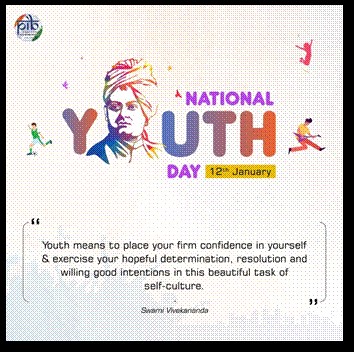
- 13 Jan 2025
In News:
On January 12, 2025, Prime Minister Shri Narendra Modi participated in the Viksit Bharat Young Leaders Dialogue 2025, an event aimed at empowering India's youth and charting a roadmap for the nation's development. This occasion also coincided with the celebration of National Youth Day, marking the 163rd birth anniversary of Swami Vivekananda, a renowned spiritual leader and social reformer who strongly believed in the transformative potential of India's youth.
Significance of National Youth Day
- Purpose:
- National Youth Day is celebrated to honor Swami Vivekananda's contributions, emphasizing the role of youth in nation-building.
- It promotes empowerment, leadership, and innovation among the youth.
- Year of First Celebration: 1985
- Key Theme (2025): "Arise, Awake, and Realize the Power You Hold"
Key Highlights from the Dialogue
- Goal of the Dialogue:
- Engaging youth in the decision-making process for a developed India by 2047.
- Empowering youth through platforms like quizzes, essay competitions, and thematic presentations.
- Ten Key Themes Discussed:
- Technology & Innovation
- Sustainability
- Women Empowerment
- Manufacturing & Agriculture
- Education and Skill Development
India’s Roadmap for 2047 (Viksit Bharat)
- Vision:
- Economic Power: India is moving toward becoming the third-largest economy.
- Strategic and Cultural Strength: India will have a robust economic, strategic, social, and cultural framework.
- Youth's Role: Innovation in technology, digital economy, space, and manufacturing will drive India’s growth.
- Key Projects and Targets:
- Target: Generating 500 GW of renewable energy by 2030.
- Net Zero Emissions for Railways: Set for 2030.
- Olympics: India aims to host the Olympics in the next decade.
- Space Power: Plans for a space station by 2035.
Viksit Bharat Young Leaders Challenge
- Objective:
- Engage youth in shaping ideas for a developed India.
- The Viksit Bharat Young Leaders Dialogue is part of the Viksit Bharat Challenge.
- Stages of the Challenge:
- Viksit Bharat Quiz: Participation by 30 lakh youth.
- Essay Writing: Over 2 lakh essays on key developmental themes.
- State Rounds: Rigorous in-person competition to identify the top young leaders.
- Participant Categories:
- 1,500 from Viksit Bharat Challenge Track.
- 1,000 from Traditional Track (cultural and science innovation).
- 500 Pathbreakers (leaders in diverse sectors).
Achievements Under Government Benefiting Youth
- Educational Reforms:
- Increase in IITs, IIITs, IIMs, and AIIMS.
- Growth in the number of higher education institutions and their global rankings.
- Economic Growth:
- India's economy has grown to nearly $4 trillion.
- Infrastructure Investments: More than ?11 lakh crore allocated for infrastructure development.
- Employment Opportunities for Youth:
- Mudra Loans: ?23 lakh crore distributed to youth entrepreneurs.
- Startup Ecosystem: India is among the top three in global startups.
- PM Gati Shakti Mission: Facilitating logistics and infrastructure development, creating employment opportunities.
Future Outlook
- Youth as the Future Leaders of India:
- India’s Youth Power: Vital to achieving a developed nation by 2047.
- The Viksit Bharat Young Leaders Dialogue is a platform for youth to voice their opinions and engage with policymakers.
- Role of Youth in India’s Transformation:
- Collective Responsibility: Every citizen's effort is essential for national goals.
- The vision of a Viksit Bharat hinges on the innovative contributions and ownership by young minds.
EmpowHER Biz – Sapno Ki Udaan

- 12 Jan 2025
In News:
The Women Entrepreneurship Platform (WEP) of NITI Aayog, in partnership with New Shop (India’s largest 24/7 convenience retail chain), launched the initiative EmpowHER Biz – Sapno Ki Udaan under the Award to Reward (ATR) program. This program aims to empower women entrepreneurs by providing them with the skills, resources, and mentorship needed to succeed in the organized retail sector. The collaboration seeks to create a robust retail ecosystem that supports women in overcoming barriers such as societal biases, limited access to financing, and a lack of mentorship.
Key Features of the Initiative:
- Target Participants: The program will select 50 women aged 18-35 through an online application process. Women from Delhi NCR, Punjab, Rajasthan, Uttar Pradesh, Haryana, Madhya Pradesh, and Gujarat will be considered.
- Top 20 Participants: The 20 best candidates will receive a 100% waiver on New Shop franchise fees, enabling them to operate their own retail businesses with reduced financial barriers.
- Program Objective: Equip women entrepreneurs with skills such as retail management, digital tools, financial literacy, and business development. Participants will also receive valuable mentorship to help them grow and scale their businesses.
- Focus on Retail: The initiative focuses on empowering women within the organized retail sector, creating a sustainable ecosystem that fosters growth and development for female entrepreneurs.
About Women Entrepreneurship Platform (WEP):
- Incubation & Transition: Established in 2018, WEP was incubated within NITI Aayog and transitioned into a Public-Private Partnership (PPP) in 2022.
- Purpose: WEP aims to empower women entrepreneurs by addressing challenges like information asymmetry and providing essential support in key areas such as:
- Access to Finance
- Market Linkages
- Training & Skilling
- Mentoring & Networking
- Compliance & Legal Assistance
- Business Development Services
- Collaboration: WEP partners with over 30 public and private sector organizations to develop scalable and impactful programs. Since 2023, the Award to Reward initiative offers a framework for stakeholders to create impactful programs for women entrepreneurs.
About New Shop:
- Business Model: New Shop operates over 200 round-the-clock convenience retail stores in high-density areas, including highways and gas stations. The company plans to expand into airports, railway stations, and other mass transit hubs.
- Franchising Vision: By 2030, New Shop aims to empower over 10,000 entrepreneurs in India through its franchising model. The partnership with WEP seeks to help women entrepreneurs access this growth opportunity.
Program Outcomes:
- Mentorship & Training: Participants will be mentored and trained on key aspects such as retail management, business development, and digital tools.
- Franchise Opportunity: Top participants will gain access to New Shop’s franchising ecosystem, providing them a ready-made business opportunity with lower entry barriers.
- Financial Assistance: The program will also provide financial resources to the women, helping them build their businesses with greater ease.
Future of Jobs Report 2025

- 12 Jan 2025
In News:
The World Economic Forum's latest "Future of Jobs Report 2025" has highlighted significant trends and predictions for the global labor market by 2030.
Key Highlights:
Fastest Growing Jobs by 2030
The report identified the following jobs as the fastest-growing by 2030:
- Big Data Specialists
- FinTech Engineers
- AI and Machine Learning Specialists
- Software and Applications Developers
- Security Management Specialists
- Data Warehousing Specialists
- Autonomous and Electric Vehicle Specialists
- UI/UX Designers
- Delivery Drivers
- Internet of Things (IoT) Specialists
Job Disruption and Creation
- 22% of jobs globally will be disrupted by 2030 due to automation and technological advancements.
- 170 million new jobs are expected to be created, resulting in a net increase of 78 million jobs.
- Technological shifts, economic uncertainty, and demographic changes are expected to play significant roles in this transformation.
Skills in High Demand
- AI, Big Data, Cybersecurity: Skills related to artificial intelligence and big data are expected to see an 87% rise, while networks and cybersecurity skills are projected to increase by 70%.
- Creative Thinking, Flexibility: Skills like creative thinking, resilience, flexibility, and agility are also expected to see a significant rise, emphasizing the importance of soft skills in a technology-driven world.
Declining Jobs
The report lists the following positions as expected to decline by 2030:
- Postal Service Clerks
- Bank Tellers
- Data Entry Clerks
- Cashiers and Ticket Clerks
- Telemarketers
- Printing Workers
- Accounting and Bookkeeping Clerks
These roles are being replaced or transformed by automation and AI, which are reshaping traditional job functions.
Technological Advancements
- Digital Access: 60% of employers believe that expanding digital access will be the most transformative trend for businesses.
- AI and Robotics: Employers are investing heavily in AI, robotics, and energy technologies, creating a demand for skilled workers in these sectors.
- Energy Technologies: Jobs related to the green transition, including renewable energy and environmental engineering, will see an uptick as countries strive to meet climate goals.
Key Drivers of Change
- Technological Change: AI, machine learning, and automation will continue to reshape industries.
- Geoeconomic Fragmentation: Geopolitical tensions and economic shifts are prompting businesses to transform their models, leading to a greater demand for cybersecurity and security management roles.
- Aging Populations: The growing demand for healthcare services, especially in high-income economies, will result in more jobs in the care economy (e.g., nursing professionals, social workers).
- Green Transition: The global shift toward clean energy and environmental sustainability will create numerous opportunities for jobs in renewable energy and climate change mitigation.
Implications for India
- AI and Robotics Investment: Indian companies are leading the way in investing in AI, robotics, and autonomous systems.
- Growth Sectors: India’s rapidly developing tech sector will see a rising demand for AI, machine learning, and big data specialists.
- Disruptions in Traditional Jobs: Roles like postal clerks, cashiers, and data entry clerks in India are also expected to face significant reductions due to automation.
Challenges for Employment in India
- Skill Mismatch: There is a significant skill gap, with many workers lacking expertise in emerging fields like AI, cybersecurity, and data science.
- Digital Divide: Urban areas are adapting to new technologies faster than rural areas, which may widen employment disparities.
- Informal Sector: India’s large informal workforce faces challenges in transitioning to technology-driven jobs due to limited access to training and education.
Reskilling and Upskilling
- The WEF report emphasizes that 59% of the global workforce will need reskilling or upskilling by 2030 to remain competitive.
- Workers must adapt to new roles, especially in technology and the green transition, to meet the evolving demands of the job market.
GEAPP and ISA Sign $100 Million Agreement for Solar Projects

- 12 Jan 2025
In News:
The Global Energy Alliance for People and Planet (GEAPP) signed a Multi-Donor Trust Fund (MDTF) agreement with the International Solar Alliance (ISA) to mobilize $100 million for funding high-impact solar energy projects. This collaboration is part of a wider effort to accelerate India's clean energy transition, bridge financing gaps, and enhance the country's energy systems. Along with this agreement, two other key initiatives were announced:
- DUET (Digitalization of Utilities for Energy Transition)
- ENTICE 2.0 (Energy Transitions Innovation Challenge)
These programs aim to address energy transition challenges by fostering scalable, cost-efficient solutions, digitalizing utilities, and supporting innovations for sustainable energy.
Key Features:
- Multi-Donor Trust Fund (MDTF):
- The MDTF aims to raise and deploy $100 million to finance impactful solar energy projects, with ISA driving the strategic direction.
- GEAPP’s Project Management Unit will provide governance, fundraising, and technical expertise to ensure project success.
- The collaboration emphasizes the importance of solar energy in achieving India's clean energy goals.
- DUET (Digitalization of Utilities for Energy Transition):
- Focuses on transforming grid systems by digitalizing grid assets and integrating them with smart sensors.
- Real-time data will help reduce transmission losses and facilitate Battery Energy Storage Systems (BESS) deployment, assisting in the integration of Distributed Renewable Energy (DRE) into the grid.
- ENTICE 2.0 (Energy Transitions Innovation Challenge):
- A platform for identifying and scaling innovative solutions to accelerate the clean energy transition, especially within India's growing startup ecosystem.
- Focuses on supporting investable opportunities for energy transition solutions, building on the earlier success of ENTICE 1.0.
Global Impact of GEAPP:
GEAPP, launched with an initial commitment of $464 million, has already funded 130 projects across 40 countries. These projects have impacted over 50 million people, helping reduce 43 million tons of CO2 emissions. The collaboration with ISA is expected to deepen GEAPP's efforts in mobilizing capital to foster clean energy access and tackle climate change.
India’s Clean Energy Transition:
India has already extended electricity access to over 800 million people, but about 2.5% of households still remain unelectrified. Distributed renewable energy, especially solar energy, will play a pivotal role in reaching these underserved populations. India aims for 47 GW of battery energy storage systems by 2032, which will support grid stability and energy access.
Additional Initiatives and Impact:
- Battery Energy Storage Systems (BESS):
- GEAPP has also supported India’s first commercial standalone BESS project, which will provide 24/7 power to over 12,000 low-income customers.
- The project is set to lower electricity tariffs by 55%, benefiting economically disadvantaged communities.
- Strategic Alliances:
- The partnership with ISA and the strategic initiatives like DUET and ENTICE 2.0 aim to further India’s climate and energy goals, bringing renewable energy solutions to underserved regions, and supporting the country's energy security.
Role of GEAPP and ISA:
- GEAPP works to mobilize financing, provide technical expertise, and ensure effective implementation of renewable energy projects globally.
- ISA focuses on solar energy solutions, and with this agreement, it seeks to enhance the solar energy capacity in its member countries, aligning with climate targets.
About GEAPP:
GEAPP is a multi-stakeholder alliance comprising governments, philanthropy, technology partners, and financial institutions. Its goal is to transition developing economies to clean energy while enhancing economic growth. It aims to:
- Reduce 4 gigatons of carbon emissions.
- Provide clean energy access to 1 billion people.
- Create 150 million new jobs globally.
Twigstats
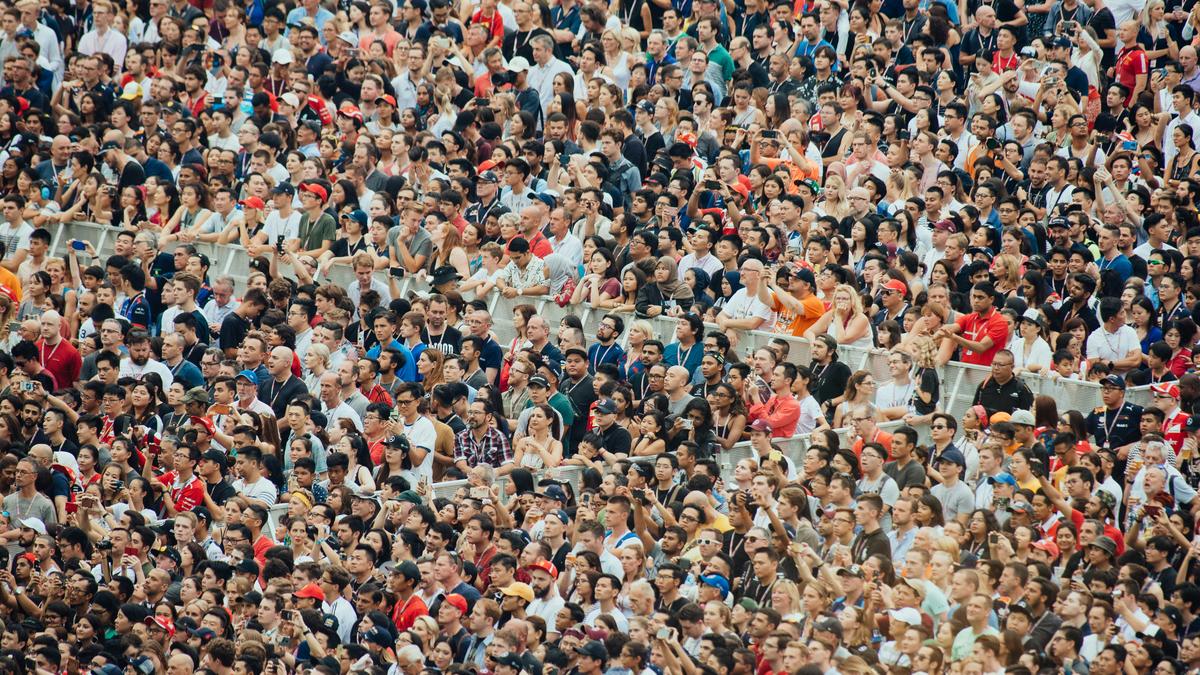
- 12 Jan 2025
In News:
The tracing of genetic ancestry remains a challenging task due to the statistical similarity among populations across geographical regions. However, recent advances in genetic analysis, particularly the development of the Twigstats tool, are significantly enhancing our ability to reconstruct genetic histories at a very high resolution.
Key Insights from Genetic Research:
- Ancient DNA (aDNA): Prehistoric human ceremonial burials, mass grave mounds, and war graves are rich sources of ancient genetic material, offering key insights into population dynamics. These samples help us understand past migrations, cultural transitions, and the genetic legacy of ancient groups.
- Challenges in Ancestry Tracing:
- Populations often share many genetic similarities, complicating the task of tracing ancestry across regions.
- Ancient DNA samples are typically of lower quality compared to modern samples, limiting the precision of past genetic studies.
- The movement of genes across time and space, through processes like gene flow, adds complexity to the understanding of population ancestry.
Traditional Genetic Techniques:
- Single Nucleotide Polymorphisms (SNPs): Used to identify natural genetic variations, SNP analysis has been central to reconstructing genetic histories. However, it is limited by its reliance on high-quality samples and struggles with closely related groups.
- Haplotypes and Genealogical Trees: By analyzing shared DNA segments (haplotypes) and rare variants, researchers gain a more comprehensive understanding of population structure and ancestry, which can reveal shifts in population over time.
The Emergence of Twigstats:
- What is Twigstats?
- Twigstats is an advanced analytical tool that enhances the precision of ancestry analysis through time-stratified ancestry analysis, a method that allows for a more fine-grained look at genetic data.
- It is designed to address the limitations of traditional methods by integrating SNPs, haplotypes, and rare genetic variants, providing a more holistic view of ancestry.
- The tool is powered by statistical languages R and C++, which help researchers better manage and analyze complex genetic data.
- How It Works: Twigstats builds family trees by analyzing shared genetic mutations, identifying recent mutations that offer a clearer understanding of historical periods and events. It helps trace the evolution of populations and offers insights into their migrations, mixing, and cultural shifts.
Key Features and Impact of Twigstats:
- Time-Stratified Ancestry Analysis: Allows researchers to study how populations evolved over time, with a focus on specific historical periods.
- Enhanced Precision: Reduces statistical errors and enhances the precision of individual-level ancestry reconstruction.
- Higher-Resolution Mapping: Provides high-resolution genetic maps of migration patterns and admixture events across centuries.
Applications of Twigstats:
- Historical Case Studies: The tool has been used to study ancient genomes from Europe, particularly the Iron, Roman, and Viking Ages (500 BC to 1000 AD). It revealed the fine-scale genetic history of populations in regions like northern and central Europe, including the movement of Germanic and Scandinavian peoples.
- Viking Age Insights: Researchers were able to trace the early presence of Scandinavian-like ancestry in regions such as Britain and the Baltic before the traditionally believed start of the Viking Age. This suggests earlier interactions and migrations from Scandinavia, which aligns with historical records of Anglo-Saxon and Viking movements.
- Cultural Transitions: The analysis identified shifts in population genetics corresponding to cultural changes, such as the shift from the Corded Ware culture to the Bronze Age and the influence of the Wielbark culture.
Genetic Methods Used in the Study:
- Single Nucleotide Polymorphisms (SNPs): Commonly used to trace ancestry but requires high-quality samples.
- Haplotypes and Rare Variants: Offer more nuanced insights into population movements by considering combinations of genetic markers inherited together.
- Genealogical Tree Inference: Applied to both ancient and modern genomes, it provides detailed demographic and ancestry information, supporting the reconstruction of high-resolution genetic histories.
Case Study: India’s Genetic History (2009 Study)
- Researchers used SNP analysis to trace the genetic history of India, revealing two major ancestral groups:
- Ancestral North Indians (ANI): Genetically closer to Central Asian, European, and Middle Eastern populations.
- Ancestral South Indians (ASI): A distinct genetic group, showcasing India’s diverse population structure.
India’s First Organic Fisheries Cluster
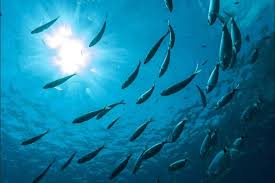
- 12 Jan 2025
In News:
The Union Minister, Department of Fisheries, Ministry of Fisheries, Animal Husbandry and Dairying Shri Rajiv Ranjan Singh inaugurated and laid the foundation for 50 key projects worth Rs. 50 crores under Pradhan Mantri Matsya Sampada Yojana (PMMSY) covering all North East Region States Except Arunachal Pradesh and Mizoram.
Key Highlights:
- Initiative: India’s first Organic Fisheries Cluster, launched under the Pradhan Mantri Matsya Sampada Yojana (PMMSY). The cluster focuses on sustainable aquaculture, promoting the production of antibiotic, chemical, and pesticide-free organic fish.
- Target Markets: Eco-conscious domestic and global markets.
Sikkim's Role as India’s First Organic State:
- Sikkim's Organic Commitment: Sikkim is the first Indian state to embrace 100% organic farming, covering 75,000 hectares of land.
- Vision: The Organic Fisheries Cluster aligns with Sikkim’s broader goal of promoting organic, sustainable agricultural practices.
Objective of Organic Fisheries Cluster:
- To prevent pollution and protect aquatic ecosystems by using ecologically healthy practices.
- Promotes sustainable fish farming methods, reducing environmental damage.
- Focus on species like amur carp and other carp varieties, aligning with the state’s success in organic farming.
Support from NABARD:
- The National Bank for Agriculture and Rural Development (NABARD) will provide financial and technical assistance.
- Key support includes:
- Infrastructure development.
- Formation of Fisheries-based Farmer Producer Organizations (FFPOs).
- Capacity building of local fishers and farmers.
PMMSY: A Comprehensive Fisheries Development Scheme:
- Investment: ?20,050 crore under PMMSY.
- Objective: To revolutionize India’s fisheries sector by promoting sustainable growth, enhancing fish production, and improving infrastructure.
- Implementation Period: FY 2020-21 to FY 2024-25.
- Key Goals:
- Boosting fish production and exports.
- Enhancing welfare of fishers and farmers.
- Promoting cluster-based development for better efficiency and competitiveness.
Cluster-Based Approach in Fisheries:
- Objective: To bring together geographically connected enterprises to enhance economies of scale.
- Impact: This approach improves financial viability, strengthens the fisheries value chain, and creates new business and livelihood opportunities.
- Types of Clusters: Includes Pearl, Seaweed, Ornamental Fisheries, Cold Water Fisheries, Organic Fisheries, and more.
Fisheries Focus in the North Eastern Region (NER):
- Fisheries Potential: The North Eastern Region (NER) has abundant freshwater resources and is a biodiversity hotspot.
- Growth: Inland fish production in the NER surged from 4.03 lakh tonnes (2014-15) to 6.41 lakh tonnes (2023-24), marking an impressive 5% annual growth.
- Investment in NER: Over ?2,114 crore invested through schemes like Blue Revolution and PMMSY.
- Key Projects:
- 50 projects worth ?50 crore to boost the region’s fisheries infrastructure, generating over 4,500 jobs.
- Projects include hatcheries, cold storage units, aquaculture parks, and fish kiosks.
India’s Global Fisheries Standing:
- India is the second-largest fish producer in the world, contributing 8% to global fish production.
- Top Rankings:
- Second in aquaculture production.
- Leading in shrimp production and exports.
- Third in capture fisheries.
Government Commitments and Schemes:
- Total Investment: Since 2015, the government has committed ?38,572 crore to fisheries development through key schemes like:
- Blue Revolution.
- Fisheries and Aquaculture Infrastructure Development Fund (FIDF).
- PMMSY.
- Pradhan Mantri Matsya Kisan Samridhi Sah-Yojana (PM-MKSSY).
- These initiatives aim to promote sustainable growth, create jobs, and enhance infrastructure in the fisheries sector.
Economic, Environmental, and Social Benefits:
- Economic Impact:
- Higher incomes for fishers and farmers through better production and export.
- Employment generation through infrastructure development.
- Environmental Impact: Reduced pollution and protection of aquatic ecosystems.
- Social Impact: Empowerment of local communities, fostering sustainable livelihoods.
UJALA Scheme
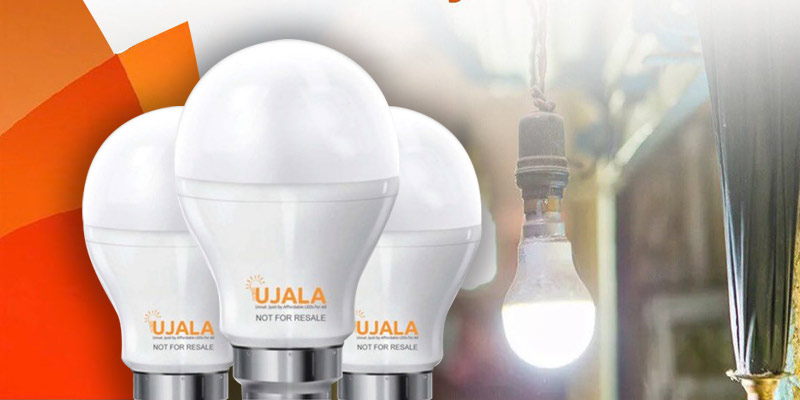
- 10 Jan 2025
In News:
UJALA scheme completes 10 years, saves ?19,153 crore annually
UJALA Scheme (Unnat Jyoti by Affordable LEDs for All)
- Launch Date: 5th January 2015 by PM Narendra Modi
- Objective:
- To promote energy-efficient LED lighting across India
- To reduce energy consumption, lower electricity bills, and decrease carbon emissions
- Implementing Body: Energy Efficiency Services Limited (EESL), Ministry of Power
- Scheme Relevance: Aims to provide affordable LED bulbs, tube lights, and fans to every household
- Global Recognition: World’s largest zero-subsidy domestic lighting scheme
Key Features:
- Affordability: Subsidized LED bulbs (?70-80), reducing the cost of electricity for households
- Energy Efficiency: LEDs consume 90% less energy than incandescent bulbs, 50% less than CFLs
- Environmental Impact: Significant reduction in CO? emissions by avoiding millions of tonnes annually
- Market Transformation: Over 36.87 crore LED bulbs distributed, saving approximately ?19,153 crore on electricity bills each year
- Consumer Benefit:
- On-Bill Financing: LED bulbs available for purchase through deferred payment via electricity bills
- Targeted low-income communities through Self-Help Groups (SHGs)
Achievements:
- Energy Savings: 47.9 billion kWh annually
- Cost Savings: ?19,153 crore saved on electricity bills
- Carbon Emission Reduction: 38.7 million tonnes of CO? avoided per year
- Peak Demand Reduction: 9,586 MW reduction in peak electricity demand
- Street Lighting: Over 1.34 crore LED streetlights installed, saving 9,001 million units annually
Key Initiatives:
- GRAM UJALA Scheme (March 2021): Aimed at rural households, providing LED bulbs at ?10 each
- Street Lighting National Programme (SLNP): Aimed at reducing public lighting costs with energy-efficient streetlights
- Encouraging Domestic Manufacturing: Stimulated local LED production, aligning with the "Make in India" mission
- E-Procurement Transparency: Real-time procurement ensuring price reductions and maintaining quality
Impact on Environment:
- Energy Savings & Carbon Footprint: The scheme significantly reduced the carbon footprint by promoting energy-efficient appliances
- Reduction in Household Consumption: Consumers benefit from reduced energy consumption and lower utility bills
New Method to Improve Nitrogen Use Efficiency (NUE)

- 10 Jan 2025
In News:
A recent breakthrough in agricultural research offers a promising solution to improve Nitrogen Use Efficiency (NUE) in crops, particularly in rice and Arabidopsis, by reducing nitric oxide (NO) levels in plants. This innovative approach provides an environmentally sustainable way to enhance crop yields while minimizing the need for synthetic nitrogen fertilizers, which have significant ecological and economic drawbacks.
Key Findings and Research Overview:
- Reducing NO Levels: The study, conducted by researchers at the National Institute of Plant Genome Research (NIPGR), demonstrated that by reducing nitric oxide (NO) levels in plants, nitrogen uptake could be significantly improved. This leads to a better NUE, a crucial factor for enhancing crop yield sustainably.
- NUE and Its Importance: NUE refers to the efficiency with which plants use nitrogen for biomass production. Improving NUE allows for higher crop yields with less fertilizer input, reducing costs and minimizing nitrogen-related environmental pollution.
- Traditional Approaches and Their Limitations: Current techniques to improve NUE primarily rely on the use of inorganic nitrogen fertilizers. These methods, though effective, have several downsides:
- They involve high operational costs for farmers.
- Excessive fertilizer use contributes to the emission of nitrogen oxides (NOx) and other pollutants.
- The production of these fertilizers also contributes to greenhouse gas emissions.
In contrast, the new study proposes a genetic and pharmacological manipulation of NO levels, offering a sustainable alternative to these traditional, resource-heavy methods.
Study Methodology:
The research team employed both genetic and pharmacological approaches to regulate NO levels in plants:
- Phytoglobin Overexpression: By overexpressing phytoglobin (a natural NO scavenger), the researchers increased the expression of high-affinity nitrate transporters (HATs) like NRT2.1 and NRT2.4. These transporters are essential for efficient nitrogen uptake.
- NO Donor and Scavenger Treatments: Plants were treated with NO donor (SNAP) and NO scavenger (cPTIO) to monitor the effects on NUE.
- Results: The treatment led to more efficient nitrogen uptake, especially under low NO conditions, by enhancing the expression of HATs. This method could increase plant growth and nitrogen utilization without relying on excessive fertilizer use.
Significance and Impact:
This research provides a pathway to enhance crop yield sustainably by addressing one of the most critical challenges in modern agriculture—reducing the reliance on nitrogen fertilizers. By modulating NO levels to regulate nitrogen uptake, this approach offers:
- Reduced need for synthetic fertilizers, lowering farmers' operational costs.
- Minimized environmental impact, including lower nitrogen oxide emissions and less nitrogen runoff.
- Improved nitrogen uptake efficiency, ensuring better crop yields, especially under conditions with limited nitrogen availability.
Broader Implications:
- Global Nitrogen Challenges:
- The overuse of nitrogen fertilizers has been a major driver of nitrogen pollution, leading to issues like eutrophication, biodiversity loss, and climate change.
- According to the Food and Agriculture Organization (FAO), excessive nitrogen use has worsened environmental conditions globally, while many regions, particularly in low-income countries, suffer from nitrogen depletion, which reduces crop productivity.
- Health and Environmental Risks:
- Nitrogen pollution contributes to health issues like methemoglobinemia (blue baby syndrome) and various long-term diseases.
- Nitrogen compounds also play a role in greenhouse gas emissions, further exacerbating climate change.
- Future Directions for Sustainable Agriculture:
- This study highlights the need for innovative nitrogen management strategies, integrating both biological and genetic approaches to optimize nitrogen use.
- Research is underway to develop NO scavenging formulations and identify bacteria that could be used in soil to enhance NUE in plants.
- Policy Recommendations:
- Governments should focus on reducing the environmental and health impacts of nitrogen fertilizer production and usage by promoting sustainable farming practices.
- Encouraging biological nitrogen fixation through crops like soybeans and alfalfa, and investing in low-emission fertilizers, can help mitigate nitrogen pollution.
Dr. V. Narayanan Takes Over as ISRO Chairman

- 10 Jan 2025
In News:
Dr. V. Narayanan has been appointed as the new Chairman of ISRO and Secretary of the Department of Space (DoS), effective from January 14, 2025, succeeding Dr. S. Somanath.
Background and Career of Dr. V. Narayanan:
Dr. Narayanan, currently the Director of Liquid Propulsion Systems Centre (LPSC) in Thiruvananthapuram, has been a key figure in ISRO since joining in 1984. With a focus on cryogenic propulsion, he has played an instrumental role in developing critical technologies for ISRO's launch vehicles. Notably, his work has contributed to India becoming the sixth country globally capable of building and operationalizing cryogenic engines.
Dr. Narayanan’s career highlights include:
- Cryogenic Technology: Leading the development of cryogenic engines for LVM3 (India's heaviest launch vehicle) and PSLV, which are central to missions like Chandrayaan and Gaganyaan.
- Chandrayaan-2 & Chandrayaan-3: As part of ISRO’s missions to the moon, his contributions were pivotal in rectifying the propulsion system issues post-Chandrayaan-2's hard landing, leading to the successful soft landing of Chandrayaan-3 in August 2023.
- Gaganyaan Mission: Overseeing the development of the propulsion systems for crew and service modules, critical for India’s ambitious human spaceflight program.
Dr. S. Somanath's Legacy:
Dr. S. Somanath, who served as ISRO Chairman and DoS Secretary spearheaded multiple landmark missions, including:
- Chandrayaan-3, Aditya-L1, and INSAT missions.
- The Small Satellite Launch Vehicle (SSLV), Re-usable Launch Vehicle (RLV-LEX), and Gaganyaan abort missions.
- National Space Policy 2023 and fostering partnerships between ISRO and private ventures.
Dr. Somanath’s tenure significantly elevated India’s space capabilities, with Chandrayaan-3 marking a historic milestone in India’s lunar exploration.
Dr. Narayanan’s Role in Upcoming ISRO Missions:
As ISRO Chairman, Dr. Narayanan will oversee several ambitious space missions, including:
- NVS-02: The launch of India's navigation satellite as part of the IRNSS constellation.
- Unmanned Gaganyaan Mission: Leading the uncrewed G-1 flight, a precursor to India's first human spaceflight.
- Indo-US NISAR Satellite: A significant collaborative launch with NASA for earth observation.
Additionally, high-profile projects such as Chandrayaan-4, India’s own space station, and future missions to Mars and Venus are in the pipeline, although not all may occur during his tenure.
Vision for ISRO Under Dr. Narayanan:
Dr. Narayanan aims to expand India’s presence in space, targeting increased global market share, particularly in the space economy, which currently holds 2% of the global space sector. His leadership will focus on:
- Increasing Satellite Capacity: Expanding India’s satellite fleet, which currently stands at 53, to meet growing demands for communication, navigation, and earth observation.
- Private Sector Involvement: Leveraging space sector reforms and collaborating with private players to drive innovation and meet burgeoning satellite needs.
- Global Collaboration: Strengthening ties with other space agencies, as ISRO continues to build respect on the global stage.
Upcoming Space Missions and ISRO's Agenda for 2025:
Under Dr. Narayanan's leadership, ISRO has a packed agenda for 2025:
- GSLV Mk-II/IRNSS-1K Mission
- Gaganyaan G-1 Mission (uncrewed flight)
- Chandrayaan-4, Bharatiya Antariksha Station, and Venus Orbiter Mission (VOM) preparations.
Dr. Narayanan’s vision aligns with India's broader goals of becoming a dominant player in the global space economy, aspiring to increase its space market share from 2% to 10%.
Indonesia Becomes 10th Member of BRICS
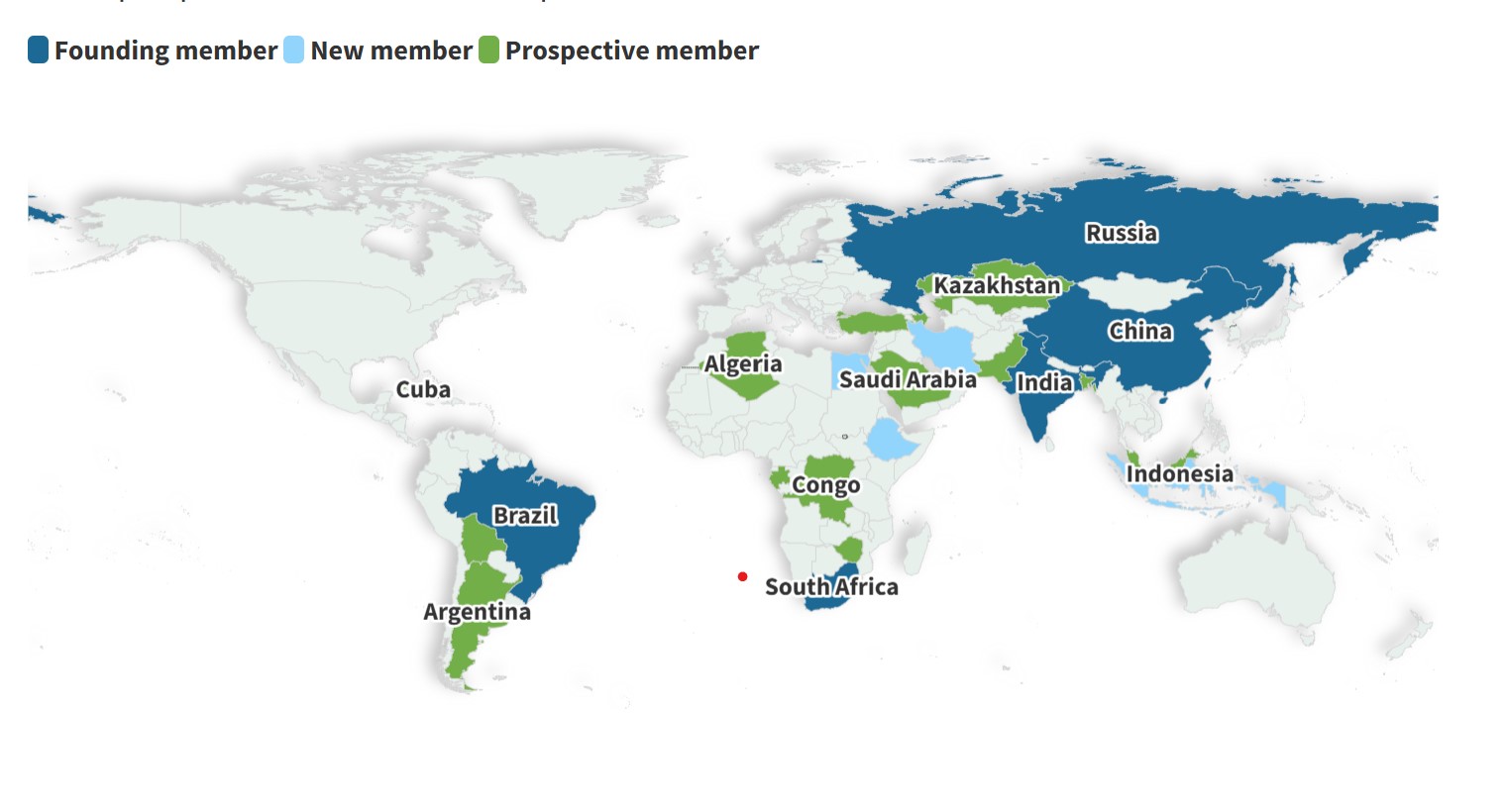
- 10 Jan 2025
In News:
In January 2025, Indonesia officially joined the BRICS group as its 10th member, signaling the expansion of this influential coalition of emerging economies. The addition of Indonesia, a Southeast Asian powerhouse, strengthens BRICS' global position and highlights the group's evolving dynamics.
BRICS Overview:
BRICS (Brazil, Russia, India, China, South Africa) is an informal intergovernmental group that fosters cooperation among major emerging economies. Initially coined as BRIC by economist Jim O'Neill in 2001, the group became BRICS in 2010 with the inclusion of South Africa. The bloc has grown steadily, with Indonesia now joining as its 10th member.
Recent Expansion:
- In 2023, invitations were extended to Saudi Arabia, Iran, UAE, Egypt, Ethiopia, and Argentina.
- By 2024, Iran, Egypt, Ethiopia, and UAE had joined as permanent members.
- Indonesia's membership was finalized in 2025, following its presidential elections and government formation.
Key Objectives of BRICS:
- Economic Growth: Promote trade, investment, and infrastructure development.
- Global Governance Reform: Advocate for equitable representation in global institutions like the UN and IMF.
- Cultural Exchange: Strengthen people-to-people connections and cultural ties.
- South-South Cooperation: Foster collaboration among developing nations.
BRICS Structure and Mechanisms:
- New Development Bank (NDB): Established in 2014, the NDB finances sustainable development projects in BRICS countries.
- Contingent Reserve Arrangement (CRA): A $100 billion safety net for financial crises.
- BRICS Academic Forum: Encourages academic collaboration across member states.
Global Influence and Economic Impact:
- Global Share: BRICS+ represents over 45% of the world’s population and 35% of global GDP (PPP-based).
- Strategic Position: The group acts as a counterbalance to the G7, challenging Western-dominated global financial systems.
- Financial Independence: BRICS aims to reduce dependence on the US dollar by facilitating local currency transactions and exploring a common currency.
- Technology Collaboration: Member countries, such as India and China, collaborate on digital payments and renewable energy technologies.
Indonesia’s Entry into BRICS:
Indonesia, the world’s fourth-most populous nation, strengthens BRICS’ representation in Southeast Asia. The country brings a robust economy and extensive trade networks, boosting the group's negotiating power. Indonesia’s membership was approved during the 2023 BRICS Summit and finalized in January 2025.
- Strategic Importance for Indonesia: The membership aligns with Indonesia's goals to enhance global cooperation, particularly with the Global South. It also reflects Indonesia's growing influence in international trade and geopolitics.
BRICS Challenges:
- Diverse Interests: Differences in economic priorities, such as India's ties with the US and Russia-China’s geopolitical rivalry, complicate consensus-building.
- Geopolitical Tensions: Disputes like the China-India border issue and Russia’s sanctions limit BRICS' ability to present a unified stance.
- Economic Sanctions and Internal Challenges: Countries like Russia face Western sanctions, while domestic issues in Brazil and South Africa divert attention from regional collaboration.
Significance of BRICS’ Expansion:
The expansion of BRICS marks a pivotal shift in global power dynamics, with a focus on South-South cooperation and equitable global governance. Indonesia’s membership further solidifies the group’s influence in Southeast Asia and adds to its efforts to challenge the dominance of Western-led financial institutions.
- Local Currency Use: The group promotes the use of local currencies for trade to reduce reliance on the US dollar.
- Global South Advocacy: BRICS champions the cause of developing nations, ensuring that emerging economies have a voice in global governance.
Recent and Upcoming BRICS Summits:
- 16th BRICS Summit (2024): Held in Kazan, Russia, with a focus on strengthening local currencies and promoting non-dollar transactions.
- 17th BRICS Summit (2025): Scheduled for July 2025 in Rio de Janeiro, Brazil, under the theme "Global South," with an emphasis on payment gateways to facilitate intra-BRICS trade.
Flamingo Festival 2025
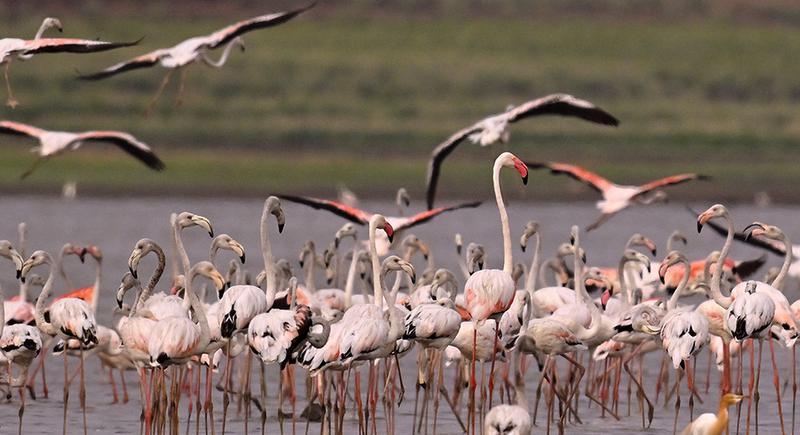
- 10 Jan 2025
In News:
The Flamingo Festival 2025 took place at Sullurpeta, in Tirupati district, Andhra Pradesh. It celebrates the arrival of migratory birds, with a focus on flamingos, to the region's key bird habitats, including Pulicat Lake and Nelapattu Bird Sanctuary.
Key Highlights:
- Birdwatching: Over 200 bird species, including flamingos, are expected to flock to the region during this festival.
- Locations: The event spans across five locations:
- Nelapattu Bird Sanctuary
- B.V. Palem (Pulicat Lake)
- Atakanithippa
- Sri City
- Sullurpeta (site for cultural programs and stalls)
- Collaborations: In association with organizations like the Bombay Natural History Society.
- Focus on Local Community: Local residents of the eco-sensitive zone will be prioritized and supported.
Key Facts on Local Wildlife and Significance:
- Pulicat Lake:
- Location: On the Andhra Pradesh-Tamil Nadu border, with 96% of the lake in Andhra Pradesh.
- Significance: The second-largest brackish water lake in India (after Chilika Lake in Odisha).
- Biodiversity: Critical habitat for migratory birds, including flamingos, and home to diverse flora and fauna.
- Economic Importance: Supports local fisheries and provides livelihood to nearby communities.
- Nelapattu Bird Sanctuary:
- Location: 20 km north of Pulicat Lake.
- Ecological Role: Largest breeding site in Southeast Asia for spot-billed pelicans.
- Biodiversity: 189 bird species, including painted storks and glossy ibises.
- Flora and Fauna: Features Barringtonia swamp forests and southern dry evergreen scrub, critical for biodiversity conservation.
- Symbiotic Relationship with Locals: Guano (bird droppings) from pelicans serves as a natural fertilizer for local agriculture, benefiting the farmers.
Flamingo Facts:
- Species: India hosts two flamingo species:
- Greater Flamingo (larger size, pale pink)
- Lesser Flamingo (smaller size, bright pink)
- Behavior: Nomadic and social birds, found in large flocks.
- Coloration: Flamingos' pink color comes from carotenoids in their diet, which are broken down and absorbed into their bodies.
Environmental & Economic Impact: The festival, apart from being a celebration of migratory birds, plays a vital role in:
- Eco-tourism development
- Biodiversity conservation
Local community engagement by highlighting sustainable tourism practices and supporting local livelihoods through eco-friendly initiatives like the Mahatma Gandhi National Rural Employment Guarantee Scheme (MGNREGS).
Bharatpol
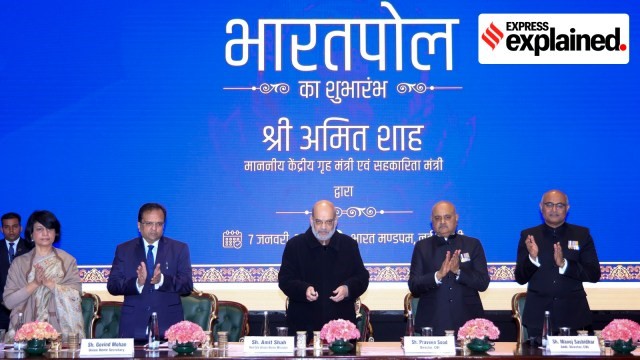
- 11 Jan 2025
In News:
Union Home Minister Amit Shah inaugurated the ‘Bharatpol’ portal, which aims to streamline international cooperation for law investigating agencies.
Key Highlights:
Bharatpol is a newly launched portal developed by the Central Bureau of Investigation (CBI) in India to facilitate faster and more efficient international cooperation between Indian law enforcement agencies and Interpol. It was inaugurated by Union Home Minister Amit Shah, to streamline the process of sharing criminal intelligence and coordinating efforts in transnational crimes like cybercrime, human trafficking, drug trafficking, financial fraud, and organized crime.
The portal aims to address the current challenges in international collaboration, which previously relied on slower communication methods such as letters, emails, and faxes, often leading to delays in investigations.
Key Features and Functions of Bharatpol:
- Unified Platform: Bharatpol integrates CBI as the National Central Bureau (NCB-New Delhi) with all Indian law enforcement agencies, from state police forces to higher authorities. This allows better coordination and quicker access to international resources.
- Simplified Request Mechanism: The portal provides a standardized method for frontline police officers to request international assistance from Interpol member countries, using templates for efficiency.
- Rapid Information Dissemination: Bharatpol enables the CBI to quickly share criminal intelligence and other pertinent information with law enforcement agencies across India, helping to tackle international criminal activities in real-time.
- Increase in Utilization of Interpol Notices: The portal makes it easier for Indian law enforcement agencies to issue and manage Red Corner Notices and other Interpol notices, which are essential tools in tracking criminals globally.
- Capacity Building and Training: Bharatpol includes resources for training law enforcement personnel, improving their ability to conduct investigations abroad and seek foreign assistance via Interpol.
How Bharatpol Works:
- Key Modules of Bharatpol:
- Connect: Facilitates the integration of Indian agencies with the Interpol NCB-New Delhi, creating a seamless communication channel.
- INTERPOL Notices: Supports the rapid issuance and processing of Interpol Notices like Red Corner Notices to locate criminals globally.
- References: Enables Indian agencies to seek and offer international assistance for investigations.
- Broadcast: Ensures quick availability of assistance requests from Interpol member countries, facilitating faster responses.
- Resources: Manages document exchanges and training materials to support the capacity-building efforts of law enforcement agencies.
Potential Benefits of Bharatpol:
- Enhanced Coordination: Bharatpol facilitates better collaboration between central, state, and Union Territory agencies, allowing for a more structured and efficient approach to international crime investigations.
- Faster Investigation: Real-time sharing of information and the use of Interpol notices will help in tracking criminals and criminal activities both in India and abroad.
- Simplified Extradition Process: By streamlining international communication, Bharatpol will assist in expediting the extradition of criminals to India for prosecution.
- Support for Transnational Crime Prevention: It will help address growing threats such as cybercrime, human trafficking, and organized crime by improving the ability of Indian law enforcement to collaborate globally.
National Mission on Edible Oils - Oil Palm (NMEO-OP)

- 11 Jan 2025
In News:
- Union Minister Shri Shivraj Singh Chouhan urges states to accelerate efforts under the National Mission on Edible Oils - Oil Palm (NMEO-OP) to enhance domestic production of edible oils and reduce reliance on imports.
Key Facts Regarding the NMEO-OP Scheme:
About the Scheme:
- Objective: Enhance domestic production of crude palm oil (CPO) and reduce India's dependence on edible oil imports.
- Centrally Sponsored Scheme: Focuses on expanding oil palm cultivation in India.
Key Targets:
- Area Expansion: Aim to cover an additional 6.5 lakh hectares by 2025-26, reaching a total of 10 lakh hectares.
- Production Increase: CPO production is targeted to rise from 0.27 lakh tonnes (2019-20) to 11.20 lakh tonnes by 2025-26, and further to 28 lakh tonnes by 2029-30.
- Per-Capita Consumption: Maintain a consumption level of 19 kg/person/annum until 2025-26.
Focus Regions:
- Special Focus: North-Eastern States and Andaman & Nicobar Islands for oil palm cultivation and CPO production.
Key Features:
- Viability Price (VP) Mechanism: Aims to protect farmers from market volatility by providing price assurance. Payments are made through Direct Benefit Transfer (DBT).
- Increased Assistance:
- Assistance for planting material increased from Rs 12,000/ha to Rs 29,000/ha.
- Special assistance of Rs 250 per plant for rejuvenating old gardens.
- Regional Support:
- For North-East and Andaman, an additional 2% of the CPO price is borne by the government to ensure fair payments to farmers.
- Special provisions for half-moon terrace cultivation, bio-fencing, and land clearance for integrated farming.
Oil Palm Cultivation:
- Origin: Native to the tropical rainforests of West Africa, oil palm is a new crop in India with high oil-yielding potential.
- Oil Yield: Oil palm produces five times the yield of traditional oilseeds per hectare.
- Types of Oil Produced:
- Palm Oil: Extracted from the mesocarp (fruit's fleshy part), containing 45-55% oil.
- Palm Kernel Oil: Derived from the kernel, used in lauric oils.
- Major States for Cultivation: Andhra Pradesh, Telangana, Kerala (98% of total production).
- Other Key States: Karnataka, Tamil Nadu, Odisha, Gujarat, Mizoram, Arunachal Pradesh, Assam, Manipur, Nagaland.
India's Oil Palm Potential:
- Cultivated Area: India currently has 3.70 lakh hectares under oil palm cultivation.
- Total Potential Area: Around 28 lakh hectares.
- Imports: India is the world's largest palm oil importer, with imports of 9.2 million tonnes in 2023-24, accounting for 60% of total edible oil imports. The country primarily imports from Indonesia, Malaysia, and Thailand.
Emergency Declared in Trinidad and Tobago
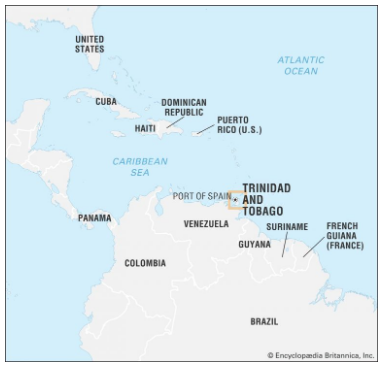
- 11 Jan 2025
In News:
- Trinidad and Tobago declared a state of emergency, in response to a surge in gang violence, which raised the annual death toll to the highest since 2013.
Trinidad and Tobago:
- Location: An island nation in the southern Caribbean, near Venezuela and Guyana.
- Capital: Port of Spain.
- Population: Approximately 1.5 million.
- Ethnic Composition: African (36.3%), Indian (35.4%), Mixed (22.8%), and others.
- Religions: Christianity (64%), Hinduism (18%), Islam (5%), and others.
- Independence: Gained from the UK on August 31, 1962, and became a republic in 1976.
- Member of: Caribbean Community (CARICOM), Commonwealth of Nations, and the United Nations.
- Major Rivers: Ortoire and Caroni.
- Geography:
- Total Land Area: 5,128 sq. km (Trinidad: 4,768 sq. km, Tobago: 300 sq. km).
- Climate: Tropical, with dry and rainy seasons.
- Highest Point: Mount Aripo.
- Natural Resource: Pitch Lake, the world’s largest asphalt reservoir.
- Mountain Range: Northern Range, part of the Andes extension.
Economic and Cultural Significance
- Exports: Major exporter of liquefied natural gas (LNG), methanol, ammonia, and petrochemicals.
- Culture: Known for Carnival, Calypso music, Soca, and the Steelpan (the only musical instrument invented in the 20th century).
- Infrastructure:
- Ports: Port of Spain, Point Lisas, Scarborough.
- Airports: Piarco International Airport (Trinidad) and A.N.R. Robinson International Airport (Tobago).
Engagement with India
- Trinidad and Tobago became the first Caribbean country to adopt India’s UPI platform.
- Both countries granted each other Most Favored Nation (MFN) status in 1997.
- Bilateral trade reached USD 368.96 million in FY 2023-24.
- The Indian diaspora constitutes about 42% of the population.
Past Emergency Declarations:
- 2014: State of emergency declared in response to gang violence.
- 2021: Emergency declared for Covid-19 restrictions.
- 2011: Limited state of emergency for drug-related crimes.
Toda Tribe
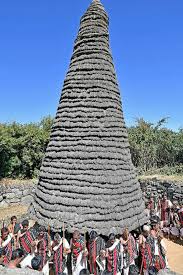
- 11 Jan 2025
In News:
- The Toda tribe, one of the oldest Dravidian ethnic groups in the Nilgiris Hills of Tamil Nadu, celebrated their traditional Modhweth festival marking the New Year.
What is the Modhweth Festival?
- About:
- Celebrated annually on the last Sunday of December or the first Sunday of January.
- Held at the Moonpo temple in Muthanadu Mund village, Nilgiri district.
- The Moonpo temple features a unique vertical spire with a thatched roof and a flat stone on top, making it one of the last Toda temples of its kind in the Nilgiris.
- Rituals and Celebrations:
- Prayers are offered to the deity, Thenkish Amman, for good health, rains, and bountiful harvest.
- Participants perform a traditional dance outside the temple.
- Unique Customs:
- Toda youth showcase their strength and masculinity by lifting a greased boulder weighing around 80 kg.
- Women are not part of the celebrations as per traditional customs.
What is the Toda Tribe?
- About:
- A pastoral tribe native to the Nilgiri Hills of Tamil Nadu.
- Classified as a Particularly Vulnerable Tribal Group (PVTG) in Tamil Nadu.
- The Toda language is Dravidian but stands out for its uniqueness among Dravidian languages.
- Significance:
- Toda lands are part of the Nilgiri Biosphere Reserve, a UNESCO International Biosphere Reserve.
- Their territory is also recognized as a UNESCO World Heritage Site.
- Religion and Beliefs:
- Their religious practices are based on a pantheon of gods, with Tökisy (goddess) and Ön (god of the underworld) as central deities.
Nilgiri Biosphere Reserve (NBR)
- About:
- Established in 1986 as India’s first Biosphere Reserve.
- Located across Tamil Nadu, Karnataka, and Kerala.
- India’s first biosphere reserve under UNESCO’s Man and the Biosphere Programme.
- Tribal Groups in NBR:
- Home to several groups such as Adiyan, Aranadan, Kader, Kurichian, Kuruman, and Kurumbas.
- Ecological Significance:
- Represents the confluence of Afro-tropical and Indo-Malayan biotic zones.
- Fauna:
- Home to species like Nilgiri tahr, Nilgiri langur, gaur, Indian elephant, Nilgiri danio (freshwater fish), and Nilgiri barbare.
- Protected Areas in NBR:
- Mudumalai Wildlife Sanctuary, Wayanad Wildlife Sanctuary, Bandipur National Park, Nagarhole National Park, Mukurthi National Park, and Silent Valley.
Z-Morh Tunnel
- 11 Jan 2025
In News:
Recently, Prime Minister Narendra Modi inaugurated the Z-Morh Tunnel at Sonamarg, which has now been renamed the Sonamarg Tunnel.
Key Takeaways:
- A 6.4-km bi-directional tunnel with an approach road of 5.6 km, Z-Morh connects the Sonamarg health resort with Kangan town in the Ganderbal district of central Kashmir.
- The tunnel has acquired its name for the Z-shaped road stretch that was previously at the place where the tunnel is being constructed.
- The Z-Morh project was initiated by the Border Roads Organisation in 2012. Although the BRO awarded the construction contract to Tunnelway Ltd, the project was subsequently taken over by National Highways and Infrastructure Development Corporation Limited (NHIDCL).
Significance
Strategic Importance
- Connectivity: Provides all-weather connectivity from Srinagar to Ladakh, ensuring year-round access.
- Military Significance:
- Critical for rapid deployment of Indian Armed Forces to Ladakh’s border areas, particularly in the context of tensions with Pakistan and China.
- Reduces dependence on air transport, lowering costs and increasing the longevity of the Indian Air Force’s aircraft.
- Adjacent Projects:
- Zojila Tunnel: An even more crucial project connecting Sonamarg to Drass in Ladakh, with an expected completion by December 2026 (extended to 2030). This will bypass the avalanche-prone Zojila Pass.
- Srinagar-Leh Highway: The Z-Morh Tunnel supports the key Srinagar-Leh route, which is important for defence logistics and trade.
Economic Significance
- Tourism:
- Sonamarg, known as the "Meadow of Gold," will benefit from year-round accessibility, boosting tourism.
- Local businesses that rely on seasonal tourist traffic will have consistent revenue flow.
- Trade and Agriculture:
- Reduced travel time and improved road safety will benefit farmers and traders, especially for those transporting goods between Kashmir and Ladakh.
- Facilitates increased investment and economic growth in the region.
Broader Infrastructure Projects in Jammu & Kashmir
Several key infrastructure projects are contributing to regional development:
- Zojila Tunnel
- Cost: ?6,800 crore
- Length: 13 km tunnel, bypassing Zojila Pass.
- Completion: Expected by 2030.
- Strategic Importance: Provides all-weather connectivity to Ladakh.
- Srinagar Semi-Ring Road
- Cost: ?2,919 crore
- Objective: Relieve traffic congestion in five districts, including Srinagar.
- Delay: New completion date is June 2025.
- Hydroelectric Power Projects:
- Ratle HE Project: 850 MW, on Chenab River, Kishtwar district.
- Kwar HE Project: 540 MW, in Kishtwar.
- Pakal Dul HE Project: 1,000 MW, on the Marusudar River, Kishtwar.
- Kiru HE Project: 624 MW, on Chenab River, Kishtwar.
- Strategic Relevance: These projects will enhance energy security and contribute to the region’s power grid.
India’s Recalculated Coastline
- 09 Jan 2025
In News:
India’s coastline has grown significantly over the past five decades, now extending 11,098 km in 2023-24, compared to 7,516 km in 1970. This marks an increase of 47.6% in just over five decades, attributed to a more precise methodology for measuring coastlines.
Key Factors Behind the Growth:
New Methodology for Measuring Coastlines:
- The old methodology used straight-line distances to measure the coastline, a method that didn't capture the complexity of India’s coastlines.
- The updated approach incorporates bays, estuaries, inlets, and other geomorphological features, offering a more accurate and detailed representation of the coastline.
- Advanced technologies like geospatial mapping have been used to ensure greater precision.
State-wise Recalculated Coastline Changes:
- Gujarat:
- Old coastline (1970): 1,214 km
- New coastline (2023-24): 2,340 km
- Growth: The largest absolute increase in coastline, nearly doubling its size.
- West Bengal:
- Old coastline: 157 km
- New coastline: 721 km
- Growth: A dramatic 357% increase, marking the highest percentage rise.
- Tamil Nadu:
- Old coastline: 906 km
- New coastline: 1,068 km
- Growth: Revised length now exceeds Andhra Pradesh’s coastline, which was 1,053 km.
- Puducherry:
- Old coastline: No major shift, but the updated data shows a contraction of 4.9 km (-10.4%), due to erosion and recalculations.
- Kerala:
- Old coastline: Relatively small increase of 30 km (5%), the smallest among the states.
Notable Observations:
- Andhra Pradesh is developing new ports like Ramayapatnam, Krishnapatnam, and Kakinada Gateway, aiming to boost economic growth and employment by leveraging its expanding coastline.
- The recalculated coastline helps in better maritime planning, focusing on port development, tourism, biodiversity conservation, and coastal erosion.
Impact of Coastline Expansion:
- Economic Growth:
- Coastal states, particularly Gujarat and West Bengal, benefit from an expanded coastline that improves maritime trade, port infrastructure, and tourism.
- The expansion supports industrialization, with growing logistics and transportation activities along the coast.
- Environmental Considerations:
- The new data aids biodiversity conservation, helping to track coastal erosion and accretion (land buildup), especially in areas like the West Coast.
- Understanding these changes is essential for disaster preparedness and sustainable coastal management.
- Coastlines of Emergence and Submergence:
- Emerging Coastlines: Land rising due to uplift or falling sea levels, such as along the Tamil Nadu Coast.
- Submerged Coastlines: Land that has sunk or been submerged due to rising sea levels, particularly noticeable along parts of Kerala’s coast.
Geographical Significance of the Expanded Coastline:
- India’s coast touches three major bodies of water: the Bay of Bengal (east), the Indian Ocean (south), and the Arabian Sea (west).
- The expansion reflects more than just geography—accurate coastline data is crucial for policy planning, maritime security, and resource management.
Bhashini Initiative
- 09 Jan 2025
In News:
e-Shram Portal, which aims to provide social security benefits to unorganised workers, has been upgraded with multilingual functionality for all 22 scheduled languages of India. This development, supported by the Bhashini Initiative, ensures that unorganised workers from diverse linguistic backgrounds can access the portal more easily and benefit from government welfare schemes.
About Bhashini Initiative:
- Launched in: July 2022
- Developed by: Ministry of Electronics and Information Technology (MeitY)
- Aim: To eliminate language barriers in accessing digital services by making AI and Natural Language Processing (NLP) tools publicly available.
Key Features:
- Local Language Translation: Bhashini offers AI-powered translation services in 22 scheduled Indian languages to ensure that digital platforms like e-Shram are accessible to everyone in their native languages.
- Open AI and NLP Resources: These tools are made available to Indian MSMEs, startups, and innovators to create a more inclusive digital ecosystem.
- Crowdsourcing Platform (Bhashadaan): A platform for people to contribute to building linguistic datasets through initiatives like Suno India, Likho India, Bolo India, and Dekho India, furthering language diversity in digital services.
- National Digital Public Platform: Aimed at providing universal access to digital content in all Indian languages, facilitating smoother communication across regions.
e-Shram Portal: A One-Stop Solution for Unorganised Workers
- Purpose: The e-Shram portal was created to provide unorganised workers with access to social security benefits and welfare schemes.
Recent Upgrade:
- Multilingual Functionality: The portal has now been upgraded to support 22 scheduled languages, making it more inclusive and user-friendly for workers who speak various regional languages.
- Previous Version: Previously, the portal was only available in English, Hindi, Kannada, and Marathi. The integration of 22 languages is a significant improvement, enabling broader participation.
Importance of the e-Shram Portal for Unorganised Workers:
- Welfare Access: The portal provides access to government schemes designed for the welfare, livelihood, and well-being of unorganised workers, including gig and platform workers and building and construction workers.
- Integration of Social Security Schemes:
- As of now, the portal facilitates access to 12 government schemes, with plans to integrate even more, including state-level programs.
- Future plans include launching a mobile app, a single application form, and the integration of payment gateways for faster disbursement of benefits.
AI-Driven Inclusive Development and Economic Transformation
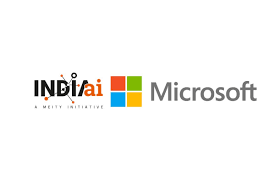
- 09 Jan 2025
In News:
IndiaAI, under the Digital India Corporation, has partnered with Microsoft to advance AI adoption in India for inclusive development and economic transformation. The collaboration focuses on skilling, innovation, AI safety, and responsible AI development, with a goal of fostering AI innovation across India, particularly in underserved rural and urban areas.
Key Highlights:
- Training 500,000 Individuals by 2026:
- Target Audience: Students, educators, developers, government officials, and women entrepreneurs.
- Goal: Empower these groups with foundational and advanced AI skills for economic opportunities and digital transformation.
- AI Catalysts (Centers of Excellence):
- Establishment of AI hubs in Tier 2 and Tier 3 cities to foster rural AI innovation.
- Objective to equip 100,000 AI innovators and developers through hackathons, community building, and creating an AI marketplace.
- AI Productivity Labs:
- Set up in 20 National Skill Training Institutes (NSTIs) across 10 states.
- Focus on training 20,000 educators and providing AI education to 100,000 students in 200 Industrial Training Institutes (ITIs).
- Support for Startups:
- Microsoft’s Founders Hub program will provide Azure credits, business resources, and mentorship to 1,000 AI startups in India, boosting innovation and growth in the Indian startup ecosystem.
- Development of Indic Language Models:
- Work on creating foundational AI models with support for Indic languages to address India’s linguistic diversity and cultural needs.
- AI Safety Institute:
- Focus on building frameworks, standards, and evaluation metrics for responsible AI development.
- Support for the creation of an AI Safety Institute in India to promote ethical and safe AI practices.
- Infrastructure & Research:
- Microsoft will also focus on enhancing cloud infrastructure and support for AI research through Microsoft Research India.
- AI-driven solutions will be developed for critical sectors like healthcare, education, and agriculture.
Investment and Strategic Goals:
- $3 Billion Investment:
- Microsoft has pledged $3 billion to expand AI and cloud infrastructure in India over the next 2 years. This investment will focus on:
- Building scalable infrastructure for AI applications.
- Enhancing cloud services and AI capabilities.
- Establishing new data centers across India, supporting the AI-first agenda.
- Microsoft has pledged $3 billion to expand AI and cloud infrastructure in India over the next 2 years. This investment will focus on:
- AI Skill Development:
- 10 million people will be trained over the next five years in AI skills, empowering the Indian workforce to adapt to AI technologies, driving job creation and economic growth.
- AI in India’s Economy:
- India aims to become a global leader in AI, with AI-powered solutions contributing to diverse sectors like finance, e-commerce, and manufacturing.
- Focus on economic growth through AI-powered industries and fostering entrepreneurship in underserved communities.
AI Technologies and Applications:
- Artificial Intelligence (AI) involves machines performing tasks that require human intelligence like decision-making, problem-solving, and learning from data.
- Machine Learning (ML): AI systems improve through data without being explicitly programmed.
- Natural Language Processing (NLP): AI systems understand and respond to human language.
- Computer Vision: AI systems analyze and interpret visual information.
- Robotics: AI powers automated tasks through robots in industries like manufacturing and healthcare.
- Cloud Infrastructure enables the scaling of AI systems:
- Cloud Computing provides on-demand access to computing power, essential for AI tasks requiring large amounts of data and processing power.
- Data Centers host AI models and data, and cloud services such as Microsoft Azure will support AI startups and businesses.
Expected Impact and Benefits:
- Inclusive AI Development: Focus on empowering women, students, and rural innovators to bridge the digital divide and promote economic empowerment.
- Startup Ecosystem: The collaboration will foster a robust AI startup ecosystem, promoting innovation and entrepreneurship through AI tools, Azure credits, and mentorship.
- Skill Development & Education: AI-driven skill training initiatives will prepare millions of individuals for the jobs of the future, particularly in the AI-driven economy, and support education reform.
- AI for Critical Sectors: Development of AI-enabled solutions to address challenges in sectors such as healthcare, education, and agriculture, driving social impact and economic growth.
Miyawaki Technique
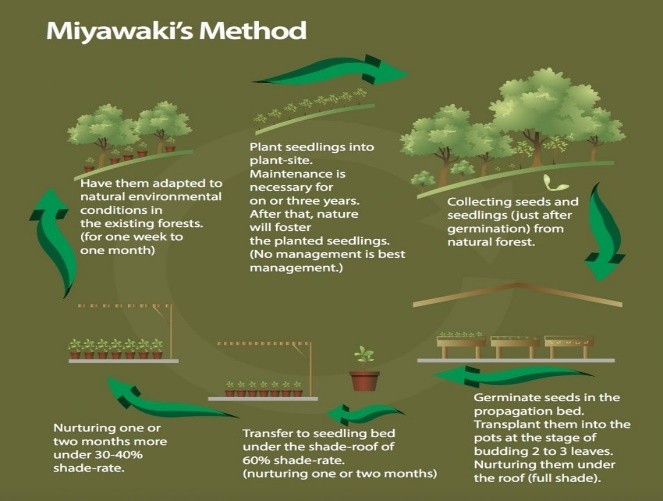
- 09 Jan 2025
In News:
- Prayagraj Municipal Corporation has successfully transformed over 56,000 square meters of garbage dumps and barren lands into lush green forests using the Miyawaki Technique over the past two years, as part of environmental conservation efforts in preparation for Mahakumbh 2025.
About Miyawaki Technique:
- Origin: Developed by Akira Miyawaki, a Japanese botanist, in the 1970s to create dense and fast-growing forests.
- Key Features:
- Dense Planting: Trees and shrubs are planted close together, often using native species.
- Accelerated Growth: Trees grow 10 times faster than in traditional forests.
- Soil Restoration: Improves soil fertility and promotes natural regeneration.
- Biodiversity Boost: Supports a variety of flora and fauna by mimicking natural ecosystems.
- Significance:
- Urban Reforestation: Converts barren or polluted lands into green spaces.
- Environmental Benefits:
- Reduces air and water pollution.
- Absorbs carbon and helps combat climate change.
- Lowers temperatures by 4-7°C.
- Sustainability: Prevents soil erosion and promotes long-term ecological balance.
Miyawaki Forests in Prayagraj:
- Achievements:
- Over 56,000 square meters of land converted into dense forests using the Miyawaki technique over the last two years.
- The project aims to create oxygen banks in preparation for the Mahakumbh 2025 and enhance air quality for millions of expected visitors.
- Plantations:
- 55,800 square meters of area developed across 10+ locations in Prayagraj.
- Largest plantation: 1.2 lakh trees in Naini industrial area.
- 27,000 trees planted in Baswar after cleaning the city's largest garbage dump.
- Environmental Impact:
- The plantations are helping to reduce dust, dirt, and foul odors, thus improving air quality.
- Temperature regulation: The dense forests can lower temperatures by 4 to 7 degrees Celsius.
- Biodiversity and Soil Fertility: Accelerated growth of trees boosts biodiversity and improves soil fertility.
- Tree Species Planted:
- Mango, Mahua, Neem, Peepal, Tamarind, Arjuna, Teak, Amla.
- Ornamental and medicinal plants like Hibiscus, Kadamba, Gulmohar, etc.
- Other species include Sheesham, Bamboo, Lemon, Drumstick (Sahjan), and Tecoma.
Benefits of Miyawaki Forests:
- Air and Water Pollution Reduction: Trees absorb carbon, purify air, and improve water quality.
- Temperature Control: The forests help in reducing urban heat islands, lowering the temperature during hot months.
- Soil Conservation: The dense forests prevent soil erosion and promote the regeneration of the natural ecosystem.
- Enhanced Biodiversity: The technique supports a rich variety of species, improving ecological balance.
AnemiaPhone
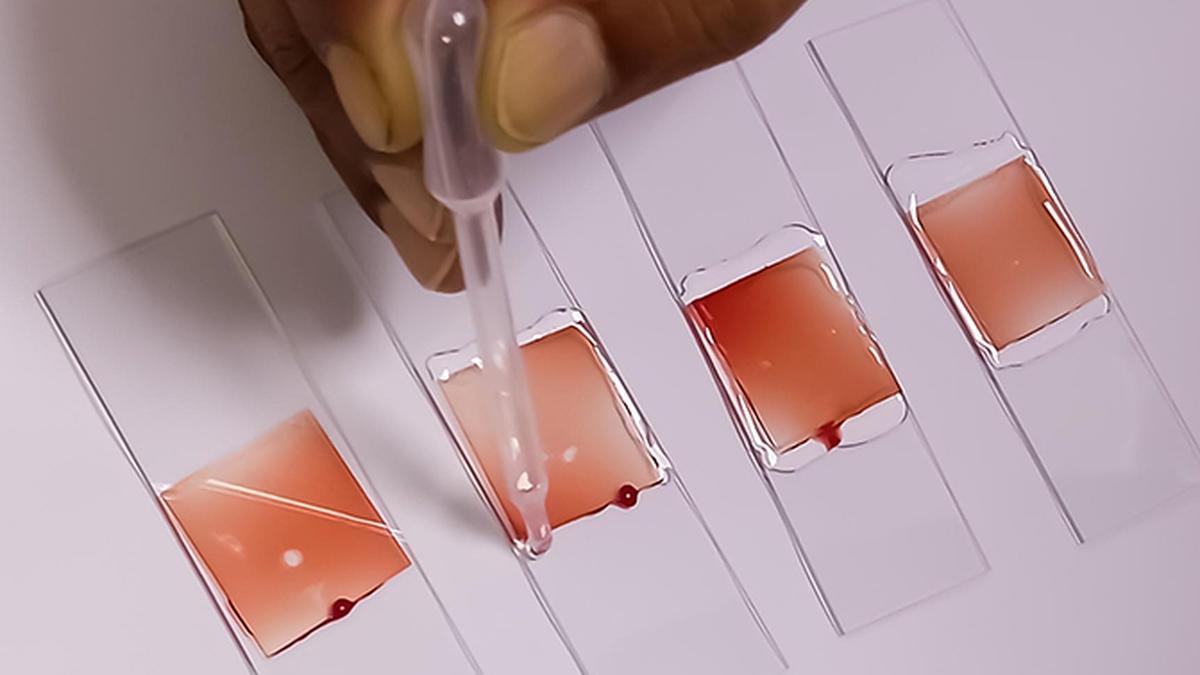
- 09 Jan 2025
In News:
AnemiaPhone, a technology developed by Cornell University researchers to accurately, quickly, and cheaply, assess iron deficiency, has been transferred to the Indian Council of Medical Research (ICMR) for integration into its programmes for anaemia, women’s health, and maternal and child health throughout the country.
Key Highlights:
- Technology Features:
- Portable, Rapid, and Affordable: AnemiaPhone is designed to detect iron deficiency efficiently at low cost.
- Requires a fingerstick (small blood sample).
- Results are available within minutes.
- Wireless: Data uploaded to a clinical database via mobile, tablet, or computer.
- Can be used by healthcare workers to assess iron deficiency on the spot and take action (guidance, triage, referral).
- Working Mechanism:
- A drop of blood is placed on a test strip.
- The reader processes the sample.
- Data is uploaded for immediate diagnosis and action.
- Test results assist in on-the-spot intervention by healthcare workers.
Anaemia and Iron Deficiency:
- Prevalence in India:
- Iron deficiency is a leading cause of anaemia.
- 50%-70% of pregnant women in India suffer from anaemia.
- 59% of women and 47% of children (6-59 months) in India suffer from anaemia (NFHS data).
- Consequences of Anaemia:
- Fatigue, dizziness, organ failure, complications in childbirth, and in severe cases, death.
- Contributes to higher maternal and child mortality rates in India.
- Impact on Health in India:
- India has one of the highest rates of anaemia in the world.
- Iron deficiency is a significant contributor to maternal deaths.
ICMR's Role and Integration into National Programs:
- ICMR and AnemiaPhone:
- The Indian Council of Medical Research (ICMR) has integrated AnemiaPhone into its Anaemia Mukt Bharat (Anaemia-Free India) program.
- The program focuses on eliminating anaemia by 2025 through screening, diagnosis, and treatment in women and children, especially in remote areas.
- Transfer of Technology:
- In November 2024, Cornell University transferred the technology to ICMR for free.
- This collaboration aims to improve health outcomes by sharing innovative health technologies.
Advantages of AnemiaPhone:
- Cost-Effective and Portable:
- Low-cost compared to traditional lab tests.
- Portable and can be used in remote and underserved areas.
- Quick Diagnosis: Results are processed in minutes, allowing healthcare workers to act without delay.
- No Need for Expensive Labs:
- Can be used at primary health centers or in door-to-door health surveys.
- Facilitates healthcare in rural or difficult-to-reach areas.
- Wireless and Easy to Use: The device is user-friendly and does not require extensive training.
Impact on Healthcare System:
- Improvement in Accessibility:
- Helps reduce the need for people to travel long distances for diagnosis, especially in rural areas.
- Ensures early diagnosis and treatment of iron deficiency and anaemia.
- Enhancing Maternal and Child Health: AnemiaPhone will contribute to reducing maternal and child mortality rates linked to anaemia.
Technology Testing and Development:
- Testing in India:
- AnemiaPhone has been tested in India and has shown accurate results in diagnosing iron deficiency.
- Single-use test strips help ensure accuracy and prevent contamination.
Global Health Context:
- Global Prevalence of Anaemia: More than 2 billion people worldwide suffer from anaemia, particularly pregnant women and young children.
- WHO’s Role: The World Health Organization (WHO) identifies anaemia as a major global health issue.
India-Malaysia Cooperation in Critical Minerals and Rare Earth Elements
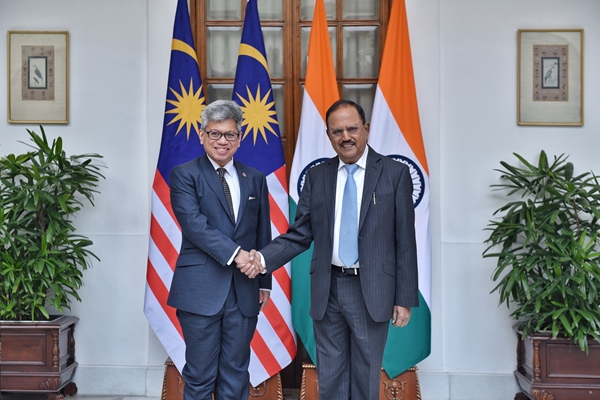
- 08 Jan 2025
In News:
- On January 7, 2025, during the inaugural India-Malaysia Security Dialogue in New Delhi, both countries agreed to enhance cooperation in critical minerals and rare earth elements (REEs).
- The meeting was co-chaired by India's National Security Adviser, Ajit Doval, and Malaysia’s Director General of the National Security Council, Raja Dato Nushirwan Bin Zainal Abidin.
- The agreement follows the upgrade of bilateral relations to a Comprehensive Strategic Partnership during Malaysian Prime Minister Anwar Ibrahim’s visit to India in August 2024.
- The dialogue also focused on other security aspects such as counter-terrorism, cyber security, and maritime security.
Importance of Critical Minerals and REEs:
-
- Critical Minerals: These are essential for a variety of industries like IT, energy, and defense. They are integral to manufacturing electric vehicle batteries, solar cells, and advanced electronics.
-
- Rare Earth Elements (REEs): Used in high-tech applications such as wind turbines, electric vehicle engines, and high-powered magnets. While their extraction is not rare, it is technically difficult due to their complex nature.
Strategic Relevance:
-
- Global Demand: The global demand for critical minerals is rising, and both countries see it as a strategic necessity to ensure a stable supply of these materials.
- Malaysia's Resources: Malaysia possesses significant deposits of non-rare radioactive earth ores, including essential REEs like Neodymium (Nd), Dysprosium (Dy), and Praseodymium (Pr). These elements are crucial in today’s technological innovations.
- India’s Dependence on Imports: India, which currently imports a substantial portion of its critical minerals, aims to diversify its supply chain by collaborating with Malaysia.
Sustainability and Ecological Accountability:
-
- Both countries recognize the environmental challenges of mining these critical resources. Malaysia aims to adopt responsible mining practices that minimize ecological harm.
- India seeks to ensure a supply chain that aligns with sustainable development goals, balancing economic needs with environmental responsibilities.
Enhancing Supply Chain Resilience:
-
- Diversification of Supply Chain: This partnership aims to reduce India’s dependency on a limited number of countries for critical minerals, enhancing resilience against global supply chain disruptions.
- Collaboration in Extraction and Processing: Both nations are exploring joint ventures in the exploration, extraction, and processing of critical minerals to boost their technological and economic standing globally.
Future Prospects:
-
- The institutionalization of this dialogue through annual meetings is expected to strengthen bilateral cooperation in the critical minerals sector.
- Increased cooperation is likely to enhance economic growth for both countries, aligning them strategically in the global minerals market as demand for these resources continues to soar.
Broader Security Cooperation:
-
- Beyond critical minerals, the India-Malaysia Security Dialogue explored enhanced collaboration in areas like counter-terrorism, cyber security, maritime security, and defense industries.
- This broadening of security cooperation complements the strategic minerals partnership, further solidifying the bilateral ties between the two nations.
Anji Khad Bridge
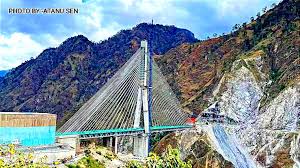
- 08 Jan 2025
In News:
The Indian Railways has unveiled a monumental engineering achievement with the completion of the Anji Khad Bridge, India’s first cable-stayed rail bridge.
Overview:
- The Anji Khad Bridge is India's first cable-stayed rail bridge, located in Jammu and Kashmir’s Reasi district.
- It is a key part of the Udhampur-Srinagar-Baramulla Rail Link (USBRL) project aimed at enhancing connectivity between Jammu and Kashmir and the rest of India.
- The bridge crosses the Anji River, a tributary of the Chenab River, and is expected to transform regional transport, boost tourism, and promote economic growth.
Key Features:
- Dimensions:
- Total length: 725.5 meters.
- Main Pylon Height: 193 meters from the foundation, standing 331 meters above the riverbed.
- The bridge is designed for train speeds of up to 100 km/h and can withstand wind speeds of up to 213 km/h.
- Structure and Design:
- Asymmetrical cable-stayed design supported by 96 cables with varying lengths (82 to 295 meters).
- The structure includes:
- A 120-meter approach viaduct on the Reasi side.
- A 38-meter approach bridge on the Katra side.
- A 473.25-meter cable-stayed portion crossing the valley.
- A 94.25-meter central embankment linking the main bridge to the approach viaduct.
- Construction Techniques:
- Used advanced construction techniques such as DOKA Jump Form Shuttering, Pump Concreting, and Tower Crane Technique to enhance safety and reduce construction time by 30%.
- A 40-ton tower crane imported from Spain was employed for operations at great heights.
- The project utilized site-specific investigations by IIT Roorkee and IIT Delhi due to the region’s complex geological and seismic conditions.
- Engineering Challenges:
- The bridge had to be constructed in the difficult Himalayan terrain, with fragile geological features such as faults and thrusts.
- Seismic activity in the region required additional precautions in the design and construction process.
- Safety and Monitoring:
- Equipped with an integrated monitoring system that includes multiple sensors to ensure the structural health of the bridge during operation.
Importance and Impact:
- Connectivity: The bridge will significantly improve connectivity between Katra and Reasi, ensuring faster rail travel and linking the Kashmir Valley with the rest of India.
- Tourism and Economic Growth: Expected to boost tourism and economic development by improving access to the region, attracting visitors, and facilitating smoother transportation of goods and services.
- Sustainability: The bridge's design ensures it remains safe under extreme weather conditions, offering long-term reliability for the Indian Railways network.
Collaboration and International Expertise:
- The design and supervision were handled by ITALFERR (Italy), with proof-checking conducted by COWI (UK).
- The project combines Indian engineering codes with Eurocodes, adhering to international standards for structural integrity.
Section 479 of the BNSS 2023
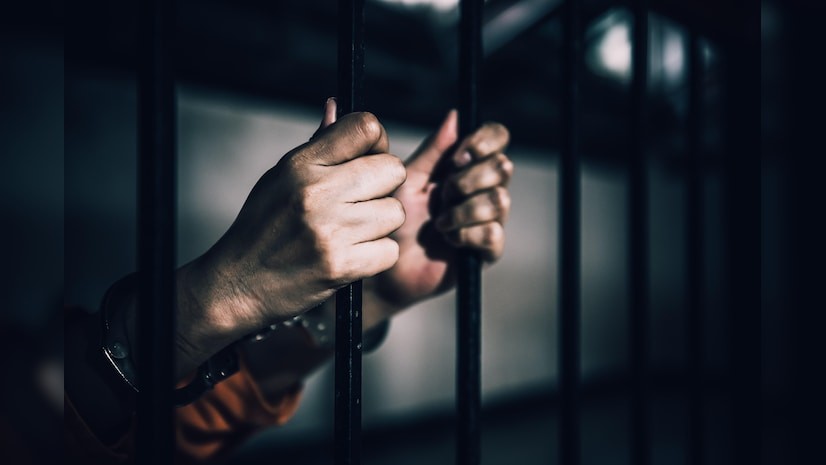
- 08 Jan 2025
In News:
Centre urges states, UTs to ensure undertrial prisoner relief in jails.
Key Highlights:
- Objective: The MHA has urged states and Union Territories (UTs) to implement provisions of Section 479 of the Bharatiya Nagarik Suraksha Sanhita (BNSS) 2023 to provide relief to undertrial prisoners (UTPs) in jails. This initiative aims to address issues such as long detention and overcrowding in prisons.
Key Provisions of Section 479 of BNSS, 2023
- Purpose: To offer relief to undertrial prisoners by mandating their release on bail or bond under specific conditions.
- Key Provisions:
- Subsection (1):
- Release on Bail: UTPs who have served half the maximum sentence for their offense (except offenses punishable by death or life imprisonment) are eligible for release on bail.
- Release on Bond for First-Time Offenders: First-time offenders, who have served one-third of the maximum sentence, are eligible for release on bond by the court.
- Subsection (3):
- Mandatory Application: It is the responsibility of the prison superintendent to apply to the concerned court for the release of eligible prisoners on bail or bond.
- Subsection (1):
- Superintendent’s Role:
- Prison superintendents are mandated to ensure timely applications for bail or bond are filed for eligible UTPs.
Implementation and Reporting
- MHA’s Advisory:
- On January 1, the MHA issued a letter to the Chief Secretaries, Director Generals, and Inspectors General of prisons in all states and UTs to ensure compliance with the provisions of Section 479 of BNSS.
- States and UTs were instructed to report the status of implementation in a prescribed format starting from January 1, 2025.
- Data to be Reported:
- First-Time UTPs: Number of first-time UTPs who have served one-third of their maximum sentence.
- Court Applications: Number of applications for bail filed by jail superintendents.
- Release on Bail: Number of UTPs released on bond or bail after meeting the eligibility criteria.
- Other UTPs: Number of UTPs who have completed half of their sentence, and the number of applications filed for their release.
- MHA’s Campaign:
- Launched on Constitution Day (November 26), this campaign encouraged states and UTs to identify eligible prisoners and file their bail applications, thus helping to reduce overcrowding in prisons and mitigate long-term detention.
Background and Context
- Why Section 479?
- Section 479 aims to reduce the prolonged detention of undertrials, some of whom may have already served significant portions of their maximum sentences. This will not only alleviate overcrowding in prisons but also expedite justice for prisoners who have spent extended periods in jail awaiting trial.
- Earlier MHA Initiatives:
- Prior to this directive, the MHA had issued an advisory on October 16, 2024, encouraging states and UTs to implement Section 479. A special push was also made during Constitution Day to move applications for the release of eligible prisoners.
- Expected Outcome:
- The measures are expected to significantly ease the challenges of overcrowded jails and provide timely relief to undertrials, especially first-time offenders. By enforcing these provisions, the government seeks to improve the judicial process for UTPs and contribute to a more effective and humane criminal justice system.
Sonobuoys

- 08 Jan 2025
In News:
India and the U.S. have announced cooperation on the co-production of U.S. sonobuoys to enhance Undersea Domain Awareness (UDA) for the Indian Navy. This technology is vital for tracking submarines and strengthening defense capabilities, particularly in the Indian Ocean region amidst growing Chinese naval presence.
This partnership is a key step in deepening defense cooperation under the U.S.-India Initiative on Critical and Emerging Technologies (iCET), launched in May 2022, and will contribute to strengthening both countries’ defense industrial bases.
About Sonobuoys
- What They Are:
- Sonobuoys are expendable sonar devices used for anti-submarine warfare and underwater acoustic research.
- Typically, small (13 cm in diameter and 91 cm in length), they are designed for deployment from aircraft or ships to detect submarines in deep waters.
- Working Principles:
- Deployment: Dropped from aircraft or ships, they activate upon water impact.
- Surface Float: Equipped with inflatable floats and radio transmitters to communicate with tracking platforms on the surface.
- Sensors: Hydrophones descend to selected depths, capturing underwater acoustic signals.
- Data Communication: Transmit acoustic data via Very High Frequency (VHF) or Ultra High Frequency (UHF) radios to operators on aircraft or ships.
- Types of Sonobuoys:
- Active Sonobuoys: Emit sound energy and receive echoes, transmitting the data back to operators.
- Passive Sonobuoys: Only listen for underwater sounds from submarines or ships and relay the information back.
- Special Purpose Sonobuoys: Measure environmental data like water temperature and ambient noise.
- Other Applications:
- Beyond anti-submarine warfare, sonobuoys are used for environmental research, including studying marine life such as whales.
Co-production of Sonobuoys: India-U.S. Collaboration
- Manufacturing Agreement:
- Ultra Maritime (U.S.) and Bharat Dynamics Ltd. (BDL) have entered into discussions to co-produce U.S. sonobuoys, in line with India’s "Make in India" initiative.
- The production will follow U.S. Navy standards, with manufacturing split between the U.S. and India.
- The focus will also be on developing bespoke technologies to optimize sonobuoy performance in the unique acoustic environment of the Indian Ocean.
- Interoperability:
- The sonobuoys co-produced in India will be interoperable between U.S. Navy, Indian Navy, and allied aircraft such as P-8, MH-60R, and MQ-9B Sea Guardian.
- This ensures seamless integration and compatibility with naval assets from the U.S., India, Japan, and Australia, especially given the Quad's strategic naval exercises like Malabar.
- Production Location:
- The sonobuoys will be manufactured at BDL's facilities in Visakhapatnam, with a focus on meeting the Indian Navy’s operational demands.
Strategic and Defense Context
- U.S. and Indian Naval Cooperation:
- India has increasingly acquired military platforms from the U.S., such as the P-8I maritime patrol aircraft, MH-60R helicopters, and MQ-9 drones. These assets are also used by other Quad nations like Australia and Japan, highlighting the importance of interoperability and shared defense capabilities in the region.
- Enhanced Maritime Domain Awareness:
- With China’s growing naval presence in the Indian Ocean, the cooperation on sonobuoys aligns with India’s strategic priority of enhancing maritime domain awareness (MDA) and Undersea Domain Awareness (UDA), which are critical for national security.
- Future Plans:
- India has also signed a $3.5 billion contract for 31 MQ-9B drones, enhancing its surveillance capabilities for maritime and other defense applications. Deliveries of these drones will begin in 2029, further boosting India’s defense readiness in the region.
Homo juluensis
- 08 Jan 2025
In News:
A significant discovery in paleoanthropology has unveiled a new species of ancient humans, Homo juluensis. This species, characterized by its unusually large skulls, lived in eastern Asia between 300,000 to 50,000 years ago. The discovery adds to our understanding of human evolution, particularly during the Middle to Late Pleistocene epoch.
Key Characteristics
- Name Origin: Homo juluensis is named after "julu," meaning "big head," reflecting the species' large cranium.
- Geographical Range: This species inhabited regions of eastern Asia, including parts of China, Korea, Japan, and Southeast Asia.
- Fossil Evidence: Fossils have been discovered in Xujiayao and Xuchang (northern and central China), dating from 220,000 to 100,000 years ago.
- Physical Traits:
- Homo juluensis had large braincases, up to 30% larger than modern humans.
- They had thick skulls and facial features reminiscent of both Neanderthals and Denisovans.
- Their dental and jaw features show strong similarities to Neanderthals.
- Cultural Practices:
- They lived in small groups and were hunter-gatherers, hunting wild horses and potentially processing animal hides.
- Their tool-making and survival strategies indicate a complex level of social organization and resource use.
Relationship with Other Ancient Human Species
- Coexistence with Other Species: Homo juluensis coexisted with Neanderthals and Denisovans, potentially interacting and interbreeding with these species.
- Genetic Exchange: Studies suggest hybridization between Neanderthals, Denisovans, and early Homo sapiens played a significant role in shaping the genetic makeup of modern humans, especially in Asia.
- Evolutionary Significance: The species' relationship with other Pleistocene hominins is complex, involving shared ancestry with Homo sapiens, Neanderthals, and Denisovans. The genetic exchange among these populations likely influenced the course of human evolution in eastern Asia.
Neanderthals and Denisovans
- Neanderthals (Homo neanderthalensis):
- Lived between 400,000 to 40,000 years ago, primarily in Europe and parts of Asia.
- Neanderthals contributed significantly to the modern human gene pool, especially among non-African populations.
- Evidence of Neanderthal DNA is present in living humans, indicating past interbreeding with early human species.
- Denisovans:
- Identified through DNA analysis in 2010, based on fossils found in a Siberian cave.
- Closely related to Neanderthals, Denisovans inhabited diverse environments ranging from Siberian mountains to Southeast Asia’s jungles.
- Like Neanderthals, Denisovans interbred with both Homo sapiens and Neanderthals, influencing the genetic structure of modern populations, especially in Asia.
Implications for Human Evolution
- Complex Evolutionary Web:
- The discovery of Homo juluensis highlights the complex web of interrelated ancient human species during the Pleistocene epoch. These species did not live in isolation but likely interacted, competed, and interbred, shaping the evolutionary history of humans in Asia.
- Broader Understanding of Human Development:
- By expanding our knowledge of species like Homo juluensis, we gain a better understanding of the genetic diversity and cultural complexity in ancient human populations. This also provides insights into the environmental and social conditions that shaped early human survival strategies.
- Impact on Modern Genetics:
- The interbreeding between these ancient species has left a lasting imprint on the genetic makeup of modern humans, especially in regions like Asia, where Denisovan genes are still present in the DNA of some populations.
18th Pravasi Bharatiya Divas (PBD)
- 07 Jan 2025
In News:
The 18th Pravasi Bharatiya Divas (PBD) Convention will be held from January 8-10, 2025, in Bhubaneswar, Odisha.
Key Highlights:
- Theme 2025:
- The theme is "Diaspora’s Contribution to a Viksit Bharat", highlighting the vital role of the Indian diaspora in India's development into a prosperous and developed nation.
- Exhibitions:
- The convention will feature four major themed exhibitions:
- Vishwaroop Ram – The Universal Legacy of Ramayana: Showcasing the Ramayana’s influence through traditional and contemporary art forms.
- Diaspora’s Contribution to Technology and Viksit Bharat: Highlighting the global technological impact of the Indian diaspora.
- Spread and Evolution of the Indian Diaspora: Focused on the migration of Indians from Mandvi (Gujarat) to Muscat (Oman).
- Heritage and Culture of Odisha: A look into Odisha’s rich cultural traditions.
- The convention will feature four major themed exhibitions:
- Key Initiatives:
- Pravasi Bharatiya Express: PM Modi will flag off this special tourist train for the diaspora, covering key religious and tourist sites in India under the Pravasi Teertha Darshan Yojana.
- Pravasi Bharatiya Samman Awards (PBSA): Recognizing significant contributions by members of the Indian diaspora in various fields.
About Pravasi Bharatiya Divas (PBD):
- Origins:
- Celebrated on January 9 each year, marking Mahatma Gandhi's return to India from South Africa in 1915, symbolizing the contributions of migrants.
- First held in 2003, the event became biennial in 2015.
- Objectives:
- Recognizes the contributions of the Indian diaspora to India’s growth.
- Fosters engagement between India and its global diaspora.
- Strengthens India’s relations with host countries and promotes understanding of India’s culture and achievements.
Contributions of the Indian Diaspora to a Viksit Bharat:
- Economic Growth:
- The diaspora plays a pivotal role through remittances, investments, and connecting Indian businesses to global markets.
- Example: The development of a thorium-based fuel by a U.S.-based NRI is a significant step toward clean nuclear energy in India.
- Global Trade Linkages:
- Facilitating partnerships, investments, and knowledge exchange to expand India’s trade base and global market presence.
- Supporting Innovation: Diaspora-driven collaborations in emerging markets boost India’s entry into high-growth sectors, enhancing the country's development prospects.
- Cultural Contributions: Indian diaspora members serve as cultural ambassadors, promoting Indian traditions, art, and heritage globally (e.g., Diwali recognized as a public holiday in several U.S. states).
Challenges Faced by the Indian Diaspora:
- Cultural Integration: Struggles with balancing cultural identity and integrating into host societies can lead to alienation.
- Political and Religious Issues: Increasing politicization and religious biases, especially against Hindus and Sikhs, in countries like the USA and Europe.
- Legal and Citizenship Issues: Complicated visa statuses, restrictive immigration laws, and issues like the H-1B visa challenge the diaspora, despite their significant contributions.
- Remittance Challenges: Economic instability, exchange rate fluctuations, and banking hurdles affect the regular flow of remittances to India, impacting families dependent on them.
Government Initiatives for the Diaspora:
- National Pension Scheme for NRIs
- Overseas Citizenship of India (OCI) Card Scheme
- Pravasi Bhartiya Kendra
- Indian Community Welfare Fund (ICWF)
ISRO's Cowpea Seed Germination Experiment in Space
- 07 Jan 2025
In News:
ISRO successfully germinated cowpea seeds (Vigna unguiculata) in microgravity conditions during the PSLV-C60 POEM-4 mission. This experiment, conducted using the Compact Research Module for Orbital Plant Studies (CROPS), marks a significant advancement in space-based agricultural research.
Details of the Experiment:
- Mission Overview:
- The experiment took place aboard the PSLV-C60 POEM-4 mission, which included 24 sophisticated payloads.
- The CROPS payload, developed by the Vikram Sarabhai Space Centre (VSSC), is an automated system designed to study seed germination and plant survival in microgravity environments.
- Methodology:
- Eight cowpea seeds were placed in a controlled, closed-box system, equipped with temperature regulation and advanced monitoring tools.
- The system tracked plant development using high-definition cameras, sensors for oxygen, carbon dioxide, humidity, temperature, and soil moisture levels.
- Significance:
- The cowpea seeds successfully germinated within four days, with leaf development expected soon.
- This breakthrough in space agriculture is vital for the development of sustainable farming techniques in space, especially for long-term space missions and human settlements on other celestial bodies.
Broader Implications:
- Space Agriculture:
- The successful germination of cowpea seeds sets the foundation for growing crops in space, essential for self-sufficient habitats in space.
- This experiment is a significant step towards sustainable space agriculture, reducing the need for Earth-based resources in extraterrestrial environments.
- Future Missions:
- The experiment's success is pivotal for future missions aimed at Moon or Mars exploration, where space-grown crops will be necessary to support human life.
- ISRO’s achievement reinforces its growing expertise in space research and highlights the potential for international collaboration in space exploration and agricultural science.
About Cowpea Seeds:
- Cowpea (also known as lobia in Hindi) is a robust, nutrient-rich legume, ideal for agricultural research due to its adaptability and resilience in varied environments.
- The successful experiment with cowpea seeds holds promise for future extraterrestrial agriculture, ensuring food security for astronauts on long-duration missions.
NCC Republic Day Camp 2025
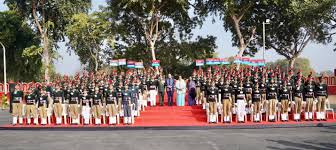
- 07 Jan 2025
In News:
Vice-President Jagdeep Dhankhar’s Address at NCC Republic Day Camp 2025.
Key Highlights
- PanchPran as the Foundation of India’s Transformation:
- PanchPran (Five Resolutions) were outlined by Vice-President Jagdeep Dhankhar as the guiding principles for India’s future development.
- These principles are fundamental to India’s national progress, ensuring a balanced approach to development and societal transformation.
The Five Principles of PanchPran:
- Social Harmony:
- Aims to strengthen unity by leveraging India’s diverse cultures and traditions as sources of national strength.
- Promotes inclusiveness and national integration.
- Family Enlightenment:
- Emphasizes the importance of families in nurturing patriotic and moral values.
- Acts as a foundation for creating a cohesive, enlightened society that respects traditions.
- Environmental Consciousness:
- Advocates for sustainable development and conservation of nature.
- Focuses on protecting natural resources for future generations.
- Swadeshi (Self-reliance):
- Encourages promoting indigenous products as part of the Atmanirbhar Bharat initiative.
- Strengthens India’s self-reliance by focusing on domestic production and consumption.
- Civic Duties:
- Instills responsibility among citizens to actively contribute to the nation’s growth.
- Encourages participation in community and national development activities.
National Cadet Corps (NCC)
- The National Cadet Corps (NCC) is the youth wing of the Indian Armed Forces, established in 1948.
- It is open to school and college students on a voluntary basis and is a Tri-Services organization, comprising the Army, Navy, and Air Force.
- Purpose and Training:
- Cadets undergo basic military training in small arms and drills.
- Officers and cadets have no obligation for active military service after completing their courses.
- Historical Background:
- Traces its origins back to the ‘University Corps’ formed under the Indian Defence Act of 1917 to address shortages in Army personnel.
- Structure and Leadership:
- The NCC is headed by a Director General (DG), a senior officer with a 3-star rank.
- Its headquarters are located in New Delhi.
Disposal of Toxic Waste from Union Carbide Factory (Bhopal)
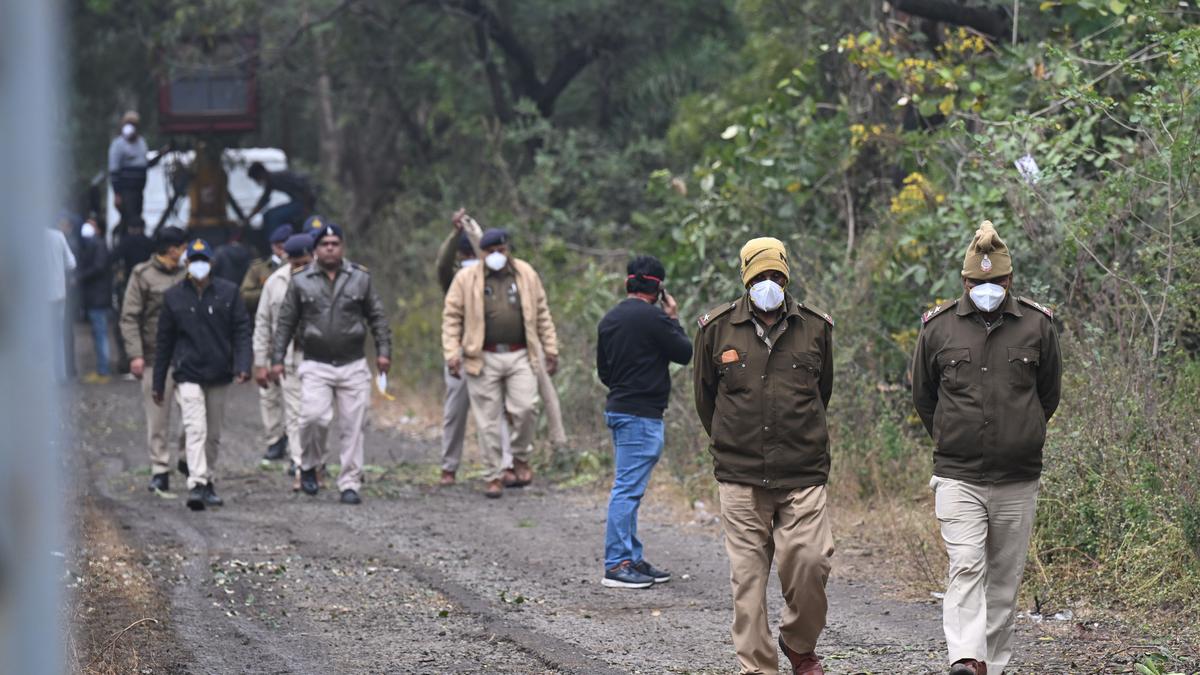
- 07 Jan 2025
In News:
The Madhya Pradesh government has begun disposing of the 337 tonnes of toxic waste from the premises of Union Carbide India Limited (UCIL) in Bhopal, 40 years after the gas tragedy.
Key Highlights:
- Packing and Transportation:
- Waste is packed in airtight containers under the supervision of the Central Pollution Control Board (CPCB) and Madhya Pradesh Pollution Control Board (MPPCB).
- 12 specially designed airtight containers are being used for packing, and each container will be loaded onto trucks for transport.
- The waste movement will be escorted with a green corridor of about 250 kilometers.
- Incineration Process:
- The waste will undergo incineration in Pithampur, with residue stored in a two-layer membrane landfill to prevent contamination.
- A trial incineration of 10 tonnes of the waste was done in 2015 with no harmful effects, and results were submitted to the High Court.
Bhopal Gas Tragedy: A Historical Overview
- About the Tragedy:
- In 1984, a chemical leak at the Union Carbide pesticide plant released methyl isocyanate (MIC), leading to one of the worst industrial disasters in history.
- The leak was caused by a failed maintenance attempt and malfunctioning safety systems.
- Immediate effects included respiratory issues, eye problems, and abdominal pain, while long-term effects included chronic lung conditions, genetic abnormalities, and higher infant mortality rates.
- Legal and Government Response:
- In 1985, the Indian government passed the Bhopal Gas Leak Disaster Act to represent victims in legal claims.
- UCIL initially offered USD 5 million, while the Indian government demanded USD 3.3 billion. The case was settled in 1989 for USD 470 million.
- In 2010, seven Indian nationals were convicted for causing death by negligence, but were released on bail.
Hazardous Waste Management in India
- Definition and Types:
- Hazardous waste refers to waste that poses significant risks due to toxicity, reactivity, or corrosiveness.
- Common sources include chemical production, outdated technologies, and wastewater treatment.
- Regulations and Disposal Methods:
- The Environment Protection Act (1986) and the Basel Convention (1992) govern hazardous waste management in India.
- India generates about 7.66 million tonnes of hazardous waste annually, with the majority being landfillable (44.3%) and recyclable (47.2%).
- Disposal methods include incineration, co-processing in cement plants, and material/energy recovery.
- Challenges in Hazardous Waste Management:
- Inadequate treatment technologies, especially in small and medium industries.
- The need for stricter compliance with waste management laws and more efficient remediation of hazardous sites like Bhopal.
Pig-Butchering Scam

- 07 Jan 2025
In News:
In its annual report, the Union Home Ministry has warned the public against getting trapped in organised 'pig-butchering scams'.
Key Highlights:
- What is it?
- The Pig-Butchering Scam is a sophisticated form of cybercrime in which fraudsters deceive victims into investing in fake online trading platforms. The term "pig-butchering" is derived from the analogy of "fattening up" victims before stealing their money, much like preparing a pig for slaughter.
- How it works:
- Initial Contact: Scammers typically reach out to victims through social media platforms, dating apps, or deceptive ads on websites like Google and Facebook.
- Building Trust: Fraudsters create false friendships, using these connections to lure victims into investing in fake online trading apps. Cryptocurrency investments are often involved due to the ambiguity in the crypto market.
- The Scam: Victims are shown fabricated profits to encourage further investment. However, when they try to withdraw their funds, the money is stolen, and they realize the trading platform was fake.
- Features of the Scam:
- Use of fraudulent online trading platforms
- Fabricated blockchain transactions, making fund recovery nearly impossible
- Reliance on victims’ desire for quick financial gains
- Linked to money laundering and cyber slavery in some cases
- Origin of the Scam:
- The scam first appeared in China in 2016, where it was referred to as “sha zhu pan” (translated as "killing pig game").
- It is a form of Ponzi scheme, wherein organized scammers exploit victims by using fake online identities and offering false investment opportunities.
- How Cybercriminals Lure Victims:
- The scammer (host) contacts potential victims via social media, dating apps, or deceptive online advertisements.
- They build trust with the victim, enticing them into exploring online investments and cryptocurrency trading, often capitalizing on the lack of clarity in the crypto space.
- The victim is then persuaded to invest larger amounts in fake trades, believing they are making real profits.
- How the Scam is Executed:
- The scammer uses fake online trading platforms to create the illusion of profit.
- After building the victim’s confidence, the fraudster encourages larger investments.
- When victims try to withdraw their funds, they realize their money is gone, often with blockchain transactions making it nearly impossible to trace or recover the funds.
- Statistics on Cybercrime in India:
- In March 2024, the National Cybercrime Threat Analytical Unit recorded over 37,500 complaints related to cybercrime.
- The highest number of complaints (42%) were associated with WhatsApp (14,746), followed by Telegram (7,651), Instagram (7,152), Facebook (7,051), and YouTube (1,135).
- Union Home Ministry’s Response:
- The MHA has flagged pig-butchering scams as a global phenomenon that could involve large-scale money laundering and cyber slavery.
- The Ministry is collaborating with Google for intelligence sharing to flag suspicious digital lending apps and other forms of fraud.
- The Indian Cyber Crime Coordination Centre is working on capacity building to combat such scams and improve the response to cybercrimes.
Great Nicobar Island Development Project

- 06 Jan 2025
In News:
An international cruise terminal to facilitate a “global” port-led city, “high-end” tourism infrastructure, and a ship-breaking yard are among the new additions to the ?72,000 crore mega-infrastructure project in Great Nicobar Island proposed by the Union Shipping Ministry.
Overview of the Project:
- The Great Nicobar Island Development Project is a ?72,000-crore initiative to transform the southernmost island of India into a hub for defense, logistics, commerce, eco-tourism, and infrastructure development.
- It is being implemented by the Andaman and Nicobar Islands Integrated Development Corporation Ltd (ANIIDCO) over 16,610 hectares of land.
- The project includes multiple components like an International Container Transshipment Terminal (ICTT), an international airport, greenfield cities, a mass rapid transport system, and a free trade zone.
Key Proposed Developments:
- International Container Transshipment Terminal (ICTT): To make Great Nicobar a key player in global maritime trade.
- Greenfield International Airport: To improve connectivity and serve as a strategic airport.
- Greenfield Cities: New urban settlements to support the infrastructure.
- Coastal Mass Rapid Transport System: An advanced transportation network along the coast.
- Free Trade Zone: To facilitate international trade activities.
- International Cruise Terminal (new addition): To attract global tourists and facilitate cruise tourism.
- Ship Breaking Yard (new addition): To establish a facility for ship building and breaking.
Geographical and Ecological Context:
- Great Nicobar Island is the largest island in the Nicobar group, located at the southern tip of India. It is covered in rainforests and hosts diverse species, including endangered ones like the leatherback turtle and the Nicobar megapode.
- The island's ecosystem is rich in biodiversity, with extensive mangroves, coral reefs, and rainforests.
Significance of the Project:
- Geo-strategic Importance: The island’s location near the Malacca Strait offers a strategic maritime advantage, enhancing India’s global maritime presence.
- National Security: With increasing Chinese influence in the region, the project aims to strengthen India's maritime security.
- Economic Growth: The ICTT and other infrastructure will boost economic activities, making the region a vital trade hub.
- Job Creation: The development will lead to numerous job opportunities for locals, especially in sectors like tourism, ports, and transport.
- Tourism Development: With eco-tourism at its core, the project is expected to generate substantial income through tourism, improving the local economy.
- Social Infrastructure: It will lead to improvements in healthcare, education, and digital services through initiatives like telemedicine and tele-education.
Chhattisgarh’s Link between Forest Ecosystem and Green GDP

- 06 Jan 2025
In News:
In a first, the Chhattisgarh state has introduced an innovative plan that connects the ecosystem services of its forests with the Green Gross Domestic Product (Green GDP).
Key Highlights:
Chhattisgarh's Green GDP Initiative:
- First State in India to link forest ecosystem services with Green GDP.
- Forests cover 44% of Chhattisgarh's land area, playing a vital role in climate change mitigation.
- Key forest products (tendu leaves, lac, honey, medicinal plants) contribute significantly to the rural economy.
Green GDP:
- Definition: An adjustment of traditional GDP that accounts for environmental costs like resource depletion and ecosystem degradation.
- Formula:
- Green GDP = Net Domestic Product (NDP) − (Cost of Resource Depletion + Ecosystem Degradation)
- NDP = GDP − Depreciation of Produced Assets.
Importance of Green GDP:
- Traditional GDP overlooks the environmental cost, treating activities like deforestation as economic gains.
- Green GDP adjusts for sustainability, ensuring long-term economic growth aligns with environmental preservation.
Global Context & Initiatives:
- SEEA (System of Environmental-Economic Accounting): Developed by the UN to track economic-environment relationships.
- WAVES: World Bank initiative integrating natural capital into national economic accounts.
- Bhutan’s GNH: Emphasizes ecological sustainability in development.
Benefits of Green GDP for Chhattisgarh:
- Promotes sustainable development by integrating economic and environmental goals.
- Climate Change Mitigation: Forests help absorb CO2, playing a key role in carbon sequestration.
- Biodiversity Conservation: Supports sustainable use of resources, preserving ecosystems.
- Cultural Integration: Acknowledges forests' cultural and spiritual importance to local tribal communities (e.g., sacred groves).
Key Features of the Initiative:
- Valuing Ecosystem Services: Includes clean air (CO? absorption), water conservation, and biodiversity.
- Eco-tourism Promotion: Developing jungle safaris and national parks, boosting local employment.
- Scientific Assessments: Employing experts to quantify forest contributions to the economy.
Challenges of Green GDP Framework:
- Valuation Complexity: Difficult to assign monetary value to non-market environmental benefits like biodiversity.
- Data Gaps: Lack of comprehensive data on environmental degradation and resource usage.
- Implementation: Requires significant changes in accounting systems and policymaking.
- Forest Definition: Plantations like oil palm may be counted as forests, misleading environmental assessments.
- Political Resistance: States may manipulate data to secure funding, prioritizing plantations over natural forests.
- Local Integration: Difficulties in involving local bodies like Panchayats due to literacy and awareness gaps.
Future of Green GDP:
- Sustainable Resource Use: Encourages responsible consumption and production, aligning with SDG 12.
- Climate Action: Contributes to the reduction of fossil fuel reliance and promotes renewable energy, aligning with SDG 13.
- Green Investments: Stimulates green technologies and industries, fostering sustainable economic growth (SDG 8).
LEADS 2024 Report
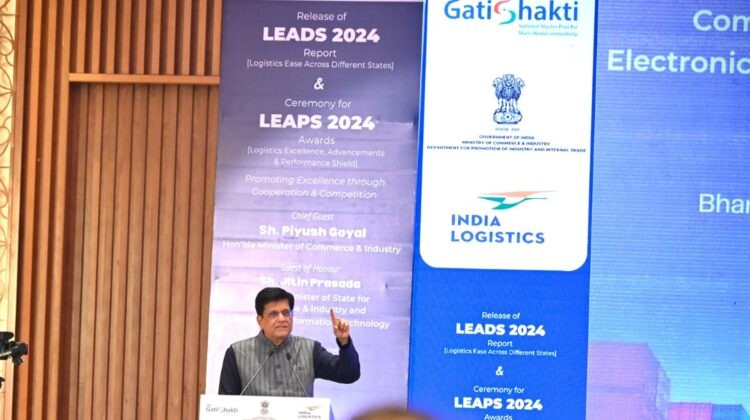
- 06 Jan 2025
In News:
- Launch of the Logistics Ease Across Different States (LEADS) 2024 report and the Logistics Excellence, Advancement, and Performance Shield (LEAPS) 2024 awards in New Delhi.
Key Highlights:
- Objective of LEADS 2024 Report:
- Evaluate logistics performance across Indian states and union territories.
- Provide actionable insights for logistics reforms to foster competitive federalism.
- Assess logistics infrastructure, services, regulatory environment, and sustainability efforts.
- Performance Evaluation:
Region Achievers Fast Movers Aspirers
Coastal States Gujarat, Karnataka, Maharashtra, Odisha, Tamil Nadu Andhra Pradesh, Goa Kerala, West Bengal
Landlocked States Haryana, Telangana, Uttar Pradesh, Uttarakhand Bihar, Himachal Pradesh, Madhya Pradesh, Punjab, Rajasthan Chhattisgarh, Jharkhand
North-Eastern States Assam, Arunachal Pradesh Meghalaya, Mizoram, Nagaland, Sikkim, Tripura Manipur
Union Territories Chandigarh, Delhi Dadra and Nagar Haveli & Daman and Diu, Jammu and Kashmir, Andaman and Nicobar Islands, Ladakh
Lakshadweep, Puducherry
- Key Remarks:
- Action Plans for Better Logistics: States should develop regional and city-level logistics plans, including for last-mile connectivity, to attract investments.
- Green Logistics: Advocate for sustainable logistics practices to ensure environmentally responsible growth.
- Public-Private Partnerships (PPP): Encourage PPPs to promote multi-modal hubs and streamline logistics infrastructure.
- Technological Integration: Push for the adoption of Artificial Intelligence, Machine Learning, and Data Analytics to enhance efficiency in logistics operations.
- Skill Development & Gender Inclusivity: Focus on workforce inclusivity and skill development to boost sectoral growth. Promote gender diversity in logistics.
- LEAD Framework: Urge logistics sectors to embrace the LEAD framework (Longevity, Efficiency, Accessibility, Digitalisation) for transformation.
- LEAD Framework and Recommendations:
- Longevity, Efficiency, and Effectiveness: Improve long-term logistics strategies.
- Accessibility and Accountability: Ensure better reach and transparent logistics practices.
- Digitalisation: Enhance digital transformation across logistics processes.
- About LEADS:
- Full Form: Logistics Ease Across Different States.
- Launched: 2018 by the Department for Promotion of Industry and Internal Trade (DPIIT), Ministry of Commerce and Industry.
- Purpose: To assess and improve logistics infrastructure and services across Indian states and UTs.
- Methodology: Based on over 7,300 responses from a pan-India survey and inputs from over 750 stakeholder consultations.
- LEAPS 2024 Awards: Recognized excellence in the logistics sector across categories such as air, rail, road, maritime freight service providers, startups, MSMEs, and educational institutions.
- PM GatiShakti Course: Launched a 15-hour online course on “PM GatiShakti Concept for Efficient Infrastructure Planning and National Development”, hosted on iGOT Karmayogi platform and UGC SWAYAM portal.
- Logistics Cost Framework Report: Unveiled a report on the logistics cost framework, aiming to accurately estimate logistics costs in India through a hybrid methodology, incorporating both EXIM and domestic cargo data.
- Significance of LEADS:
- Provides critical insights into logistics performance, helping States and UTs to improve infrastructure, services, and regulatory practices.
- Plays a key role in India's vision of becoming a $32 trillion economy by 2047 by improving logistics efficiency, sustainability, and global competitiveness.
Human Metapneumovirus (HMPV)
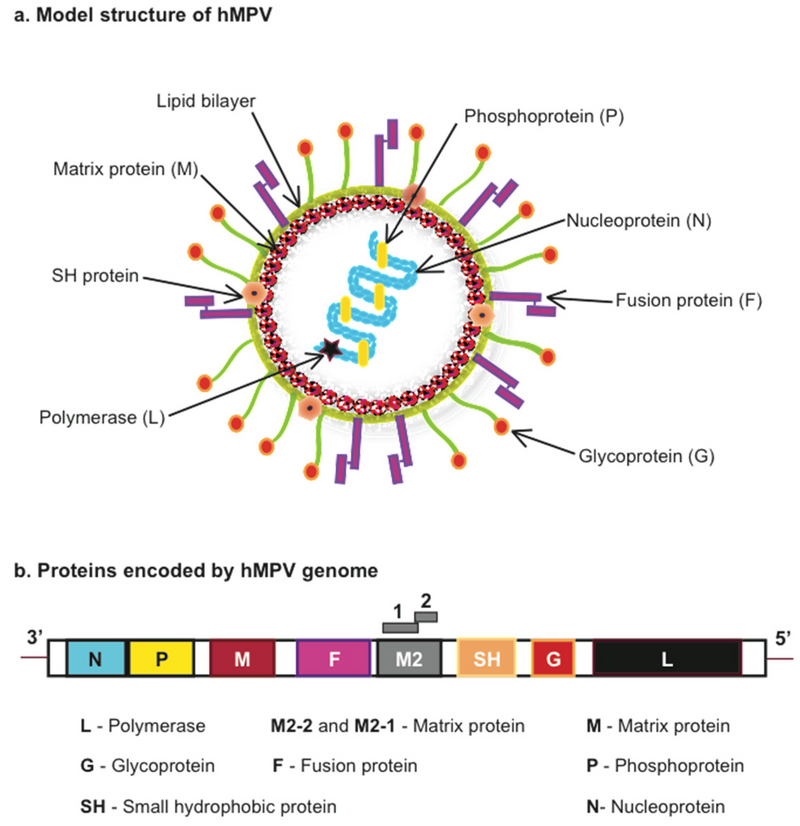
- 06 Jan 2025
In News:
Five years after the COVID pandemic, China is experiencing a surge in HMPV cases, particularly in children under 14 years of age
Key Highlights:
- What is HMPV?
- A respiratory virus from the Pneumoviridae family, discovered in 2001.
- Causes both upper and lower respiratory tract infections, similar to the common cold or flu.
- Origin and Discovery:
- Identified in the Netherlands in 2001 through genomic sequencing of respiratory samples.
- Risk Groups:
- Children under 5 years, especially infants.
- Elderly individuals (65+).
- Immunocompromised persons and those with chronic respiratory conditions (e.g., asthma).
- Symptoms:
- Common: Cough, runny nose, fever, sore throat.
- Severe: Wheezing, shortness of breath, potentially leading to bronchitis or pneumonia.
- Incubation Period: 3-6 days.
- Transmission:
- Spread via droplets from coughing or sneezing.
- Close contact (e.g., handshakes, hugs).
- Contaminated surfaces, touching face after contact.
- Treatment:
- No specific antiviral treatment or vaccine available.
- Symptom management: hydration, rest, OTC medications for fever and congestion.
- Severe cases may require hospitalization (oxygen therapy, IV fluids).
- Diagnosis:
- NAATs (Nucleic Acid Amplification Tests): Detect viral genetic material.
- Antigen-based immunoassays: For severe cases or outbreaks.
- Complications:
- Can lead to bronchiolitis, bronchitis, pneumonia, asthma, or COPD flare-ups.
- Risk of ear infections (otitis media) in some cases.
- Prevention:
- Hygiene: Regular handwashing, covering coughs/sneezes, maintaining personal hygiene.
- Physical Distancing: Avoid close contact, wear masks in crowded settings.
- Caution for Vulnerable Groups: Extra care for individuals with chronic respiratory conditions.
Global Situation:
- China: Experiencing a rise in HMPV cases, particularly among children under 14 years.
- India: No reported cases yet, but monitoring the situation closely.
Key Facts:
- HMPV is a winter virus commonly seen in colder months (winter and early spring).
- Estimated 10%-12% of respiratory illnesses in children are caused by HMPV.
- The virus is part of the Pneumoviridae family, alongside respiratory syncytial virus (RSV), measles, and mumps.
No specific antiviral treatment or vaccine for HMPV; antibiotics are ineffective.
National Sports Awards 2024
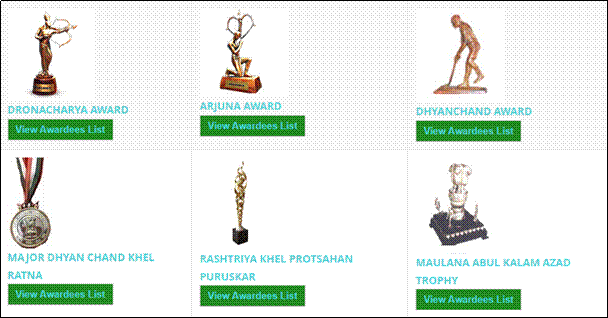
- 06 Jan 2025
In News:
The National Sports Awards 2024 were recently announced by the Ministry of Youth Affairs & Sports to celebrate excellence in Indian sports.
Key Highlights:
Major Dhyan Chand Khel Ratna Award
- This is India's highest sporting honor, renamed in 2021 after hockey legend Major Dhyan Chand.
- It’s awarded for exceptional performance in sports over a four-year period.
- 2024 Winners:
- Gukesh D (Chess)
- Harmanpreet Singh (Hockey)
- Praveen Kumar (Para-Athletics)
- Manu Bhaker (Shooting)
- The award includes a cash prize of Rs 25 lakh.
Arjuna Award
- Recognizes outstanding performance in sports over the previous four years and attributes like leadership, discipline, and sportsmanship.
- 2024 Winners: Various athletes across multiple disciplines received this honor.
Arjuna Award (Lifetime)
- Given to retired athletes who have not only excelled during their careers but also contributed to the promotion of sports post-retirement.
- 2024 Winners:
- Shri Sucha Singh (Athletics)
- Shri Murlikant Rajaram Petkar (Para-Swimming)
Dronacharya Award
- Given to coaches who have made a consistent and significant contribution by guiding sportspersons to excel at international events.
- The award includes a bronze statue of Dronacharya, a certificate, and a cash prize.
Maulana Abul Kalam Azad (MAKA) Trophy
- Awarded to the top-performing university in the Khelo India University Games.
- 2024 Winner: Chandigarh University.
Rashtriya Khel Protsahan Puruskar
- Recognizes individuals or organizations for their contribution to the promotion and development of sports.
- 2024 Winner: Physical Education Foundation of India.
These awards were selected by a committee led by Justice (Retd.) V. Ramasubramanian and include eminent sportspersons, journalists, and sports administrators. The winners will receive their awards from the President of India, marking a prestigious moment in Indian sports.
Saint Narahari Tirtha

- 05 Jan 2025
In News:
In a remarkable discovery, a member of the Team of Research on Culture and Heritage (TORCH) has hit upon a three-foot idol of the 13th Century saint, Narahari T?rtha recently.
Key Highlights:
Birth and Early Life:
- Born circa 1243 CE in Chikakolu (modern-day Srikakulam, Andhra Pradesh).
- Hailing from an aristocratic family in the Gajapati Empire of Odisha.
Philosophical Influence:
- A prominent disciple of Madhvacharya, the founder of Dvaita philosophy (dualism).
- Narahari Tirtha played a key role in propagating Madhva's Vaishnavism in Eastern India, particularly in the Kalinga region (modern-day Odisha and Andhra Pradesh).
Role in Eastern Ganga Dynasty:
- Served as a minister in the Eastern Ganga Dynasty for over 30 years.
- Guided kings to align their governance with Sanatana Dharma and reformed temple administration.
- His contributions are documented in inscriptions at the Simhachalam and Srikurmam temples.
Religious and Cultural Contributions:
- Played a key role in spreading Vaishnavism and Dvaita philosophy.
- First to compose Devaranamas in Kannada, marking a significant cultural contribution.
- Contributed to the development of Yakshagana Bayalata (a dance-drama) and the classical dance form that evolved into Kuchipudi.
Writings and Intellectual Legacy:
- Authored 15 works, with two surviving texts: Gita Bhasya and Bhavaprakasika.
- His teachings and writings significantly impacted the Madhva tradition and regional literature.
Discovery of the Idol:
- A three-foot idol of Narahari Tirtha was discovered at Simhachalam Temple in Visakhapatnam, Andhra Pradesh.
- The idol depicts Narahari Tirtha holding a script on palm leaves, flanked by devotees.
Contributions to Temple and Education:
- Transformed the Simhachalam Temple into a renowned center for Vaishnavism.
- Played a crucial role in safeguarding sacred idols like Moolarama and Moola Sita for Madhvacharya.
Cultural and Artistic Legacy:
- Promoted regional art forms, helping establish Kuchipudi as a classical dance style in Andhra Pradesh.
- Advocated for Yakshagana Bayalata, a form of dance-drama popular in coastal Karnataka.
Honors and Recognition:
- Bestowed titles such as "Loka Surak?a?a Ati Nipu?a?" and "Yo Avati Kalinga Bhu Sambhav?n" for his contributions to philosophy and governance.
Final Resting Place:
- Narahari Tirtha was consecrated near Chakratirtha at Hampi on the banks of the Tungabhadra River after his death.
- His legacy continues to influence the temple traditions, especially in Puri Jagannath, strengthening the Madhva influence in Odisha.
Year of Artificial Intelligence

- 05 Jan 2025
In News:
The All India Council for Technical Education (AICTE) has declared 2025 as the "Year of Artificial Intelligence" (AI), aiming to empower over 14,000 AICTE-approved colleges and benefit 40 million students. This initiative aligns with the Prime Minister’s vision to make India a global leader in AI and technology.
Key Objectives and Features of the AICTE AI Initiative:
- Positioning India as a Global AI Leader:
- Empowering students with AI skills to drive innovation and lead in the emerging AI-driven economy.
- Preparing India’s workforce for the technological advancements of the future.
- Core Elements of the AICTE AI Initiative:
- AI Affirmation Pledge: Institutions will adopt and display an AI Affirmation Pledge, focusing on innovation, ethics, and education in AI.
- Comprehensive AI Integration:
- Introducing interdisciplinary AI courses and research programs.
- Setting up AI labs in collaboration with industries to meet global standards.
- Promoting ethical AI practices with societal benefits in focus.
- AI Awareness Campaign:
- “AI for All: The Future Begins Here” campaign includes workshops, hackathons, and guest lectures.
- Formation of student-driven AI chapters to foster innovation and research.
- Faculty Development & Industry Partnerships:
- Workshops and certification programs for faculty to improve AI teaching.
- Collaboration with companies like Adobe, CISCO, and IBM for student exposure through internships and mentorships.
- Recognition of Excellence: Institutions excelling in AI integration will be recognized, serving as role models for others.
- Action Plan for Institutions:
- All institutions are required to submit AI Implementation Plans by December 31, 2024. These plans will be evaluated by the AICTE Approval Bureau and exemplary submissions will be highlighted as benchmarks.
- Shaping India as a Global AI Leader:
- AICTE aims to revolutionize India’s education system and enhance its position in the global AI race, focusing on building a self-reliant workforce.
Additional Context on AICTE and its Role:
- AICTE Overview:
- A statutory body and national-level council under the Ministry of Education.
- Established in November 1945 as a national-level apex advisory body for technical education in India.
Government Initiatives to Support AI and Consumer Protection:
- AI and Consumer Protection:
- AI-driven tools launched to enhance consumer protection, such as the National Consumer Helpline, e-MAAP Portal, and Jago Grahak Jago mobile application.
- New guidelines for regulating deceptive marketing in e-commerce to ensure consumer confidence in the digital market.
- Tools like the e-Daakhil Portal for online complaint filing.
Impact:
- This initiative will have a far-reaching impact, involving more than 14,000 institutions and 40 million students nationwide, preparing them for leadership roles in AI and technology, and helping India secure its future in the global AI-driven economy.
Translocation of Tigers from Madhya Pradesh
- 05 Jan 2025
In News:
Madhya Pradesh to translocate 15 Tigers to Rajasthan, Odisha and Chhattisgarh.
Key Highlights of the Translocation:
- Scale of Translocation: Largest relocation of big cats from a single state in India.
- Approval: NTCA has approved the translocation of 15 tigers from Madhya Pradesh to Rajasthan, Chhattisgarh, and Odisha.
- Source Reserves:
- Bandhavgarh, Panna, Kanha, and Pench Tiger Reserves in Madhya Pradesh.
- Distribution Plan:
- Rajasthan: 4 tigresses.
- Chhattisgarh: 2 male tigers and 6 tigresses.
- Odisha: 1 male tiger and 2 tigresses.
- Funding: States receiving tigers will bear all expenses related to translocation.
Objectives of the Translocation:
- Enhance Tiger Conservation: Reintroduce and bolster tiger populations in recipient states.
- Population Management: Relocate tigers to areas with suitable habitats to alleviate territorial disputes in overpopulated reserves.
- Genetic Diversity: Introduce new individuals to isolated tiger groups to prevent inbreeding and support long-term species survival.
About Kanha, Bandhavgarh, and Pench Tiger Reserves:
- Kanha Tiger Reserve:
- Location: Maikal range of the Satpura Mountains.
- Significance: Largest national park in Madhya Pradesh.
- Distinct Feature: First tiger reserve in India with an official mascot, ‘Bhoorsingh the Barasingha’.
- Flora and Fauna: Rich biodiversity with Royal Bengal Tigers, leopards, and the IUCN Vulnerable species, Barasingha.
- Bandhavgarh Tiger Reserve:
- Location: Between Vindhyan and Satpura ranges in Umaria district, Madhya Pradesh.
- Significance: Known for one of the highest densities of Royal Bengal Tigers in India.
- Historical Link: The ancient Bandhavgarh Fort, linked to the legend of Lord Rama and Lakshmana.
- Pench Tiger Reserve:
- Location: Spans Seoni and Chhindwara districts in Madhya Pradesh, extends into Maharashtra.
- Significance: Inspiration for Rudyard Kipling’s The Jungle Book.
- Flora and Fauna: Includes teak, saag, mahua forests; tigers, leopards, wild dogs, and gaur are key species.
Tiger Translocation Project Overview:
- First Project:
- Initiated in 2018, two tigers relocated from Kanha and Bandhavgarh to Satkosia Tiger Reserve in Odisha.
- Main Objectives:
- Reintroduce Tigers: In areas where they have been extirpated or extinct.
- Alleviate Territorial Disputes: Overpopulated reserves need additional tigers to reduce human-animal conflict.
Benefits of Translocation:
- Ecological Balance: Restores predator-prey dynamics in underpopulated reserves.
- Human-Animal Conflict Mitigation: Reduces conflict in overcrowded reserves.
- Rewilding Landscapes: Revives areas where tigers were locally extinct.
Concerns Associated with Translocation:
- Local Community Protests: Villagers fear tigers will pose a threat to their safety.
- Territorial Disputes: New tigers may face conflict with resident tigers.
- Poor Forest Management: Inadequate prey augmentation and habitat management may hinder success.
Madhya Pradesh’s Role in Tiger Conservation:
- Largest Tiger Population: Madhya Pradesh hosts the largest number of tigers in India, with 785 tigers as per NTCA’s 2022 report.
- Tiger Reserves: The state is home to nine tiger reserves, including the newly notified Madhav Tiger Reserve in Shivpuri.
- Translocation Strategy: Madhya Pradesh’s involvement helps reduce local tiger population pressure and contributes to broader conservation efforts across India.
Inter-State Tiger Translocation Goals:
- Reinforcement and Reintroduction: Introduce tigers into areas historically part of their range but from which they have been extirpated or extinct.
- Genetic Diversity: Introduce new tigers to isolated populations to maintain long-term population health.
Thanthai Periyar Memorial
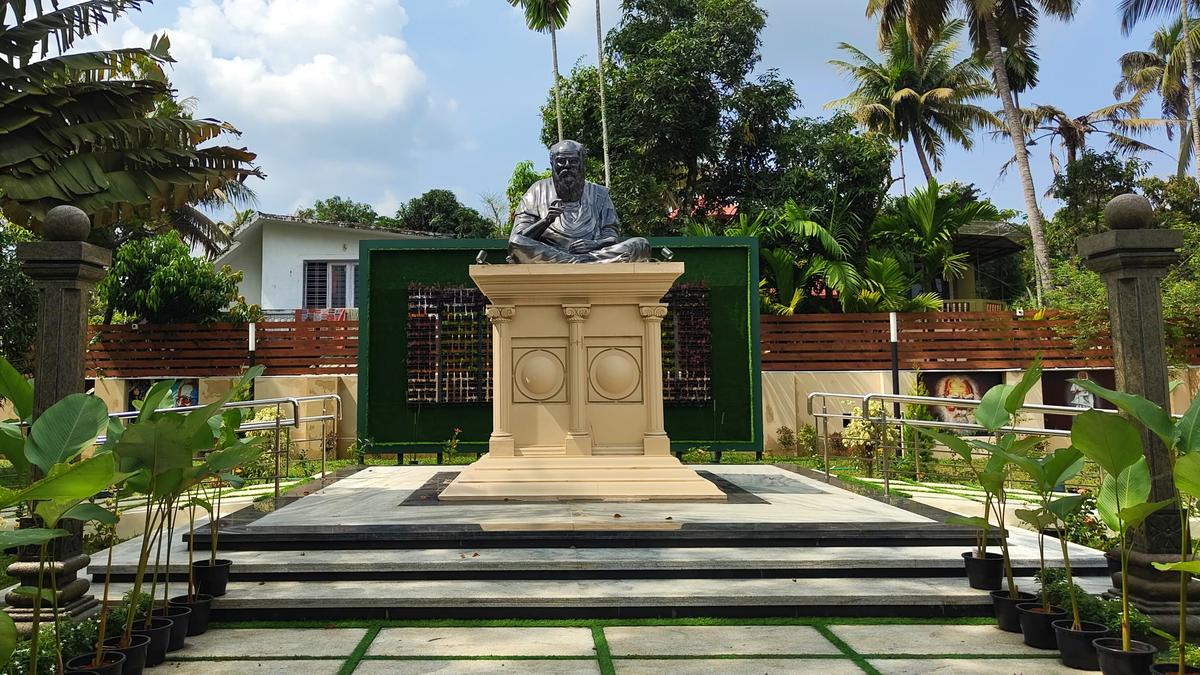
- 05 Jan 2025
In News:
In a significant event for both Kerala and Tamil Nadu, Kerala Chief Minister Pinarayi Vijayan and Tamil Nadu Chief Minister M.K. Stalin are set to reunite at Vaikom, to inaugurate the extensively renovated memorial dedicated to Tamil reformist E.V. Ramasami Naicker, popularly known as Thanthai Periyar. This marks a historic occasion over a year and a half after they jointly inaugurated the centenary celebrations of the Vaikom Satyagraha.
Key Highlights:
Memorial History and Significance:
- Established: January 1994
- Location: 70-cent property near Valiyakavala Junction, Vaikom
- Ownership: Tamil Nadu Government
- Periyar Statue: Installed in 1985 on 84 cents of land provided by Kerala government; remains the centerpiece.
- Historical Neglect: The memorial suffered from years of neglect before the renovation.
Role of Periyar in Vaikom Satyagraha:
- Vaikom Satyagraha (1924–1925):
- First organized movement for the rights of the ‘untouchable’ communities in India.
- Led by prominent leaders like T.K. Madhavan, K.P. Kesava Menon, and K. Kelappan.
- Periyar, alongside his wife Nagamma, joined the movement, seeking access to public roads leading to the Sri Mahadeva Temple in Vaikom.
- Periyar’s Contribution:
- Was imprisoned twice for his participation in the movement.
- Honored with the title Vaikom Veeran for his leadership.
- Impact: The movement played a crucial role in securing social equality for all sections of society.
Periyar’s Legacy:
- Self-Respect Movement: Founded by Periyar to promote social equality and eliminate caste-based discrimination.
- Dravidar Kazhagam: A political and social organization founded by Periyar, advocating for the rights of the Dravidian people.
- Father of the Dravidian Movement: Periyar’s philosophy and activism laid the foundation for the Dravidian political ideology and social reforms in Tamil Nadu.
Rabbit Fever
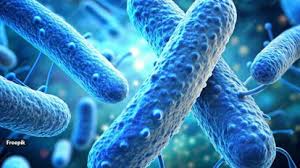
- 05 Jan 2025
In News:
Tularemia, commonly known as "rabbit fever," is a rare but highly infectious bacterial disease caused by Francisella tularensis. Though uncommon, it can lead to severe health complications if left untreated. Over recent years, cases of tularemia have been on the rise in the United States, drawing attention to the broader environmental and epidemiological factors influencing the disease’s spread.
Rising Incidence of Tularemia
Between 2011 and 2022, the United States saw a 56% increase in the annual average incidence of tularemia infections compared to the previous decade, according to the Centers for Disease Control and Prevention (CDC). Vulnerable populations include children aged 5 to 9, older men, and individuals of American Indian or Alaska Native descent. The increasing number of reported cases highlights the growing concern over this disease, despite its rarity.
Transmission Pathways
Tularemia is primarily transmitted through:
- Direct Contact with Infected Animals: Common carriers include rabbits, hares, and rodents, particularly those infected with Francisella tularensis. This presents a risk for individuals working closely with wildlife, such as hunters.
- Insect Bites: Ticks, especially in regions with high tick populations, and deer flies can spread the disease.
- Contaminated Food or Water: Consuming undercooked meat from infected animals or untreated water can lead to infection.
- Inhalation of Contaminated Dust or Droplets: This is a potential risk in agricultural or laboratory settings and can result in pulmonary tularemia.
Contributing Factors to the Rise in Cases
Several factors contribute to the increasing prevalence of tularemia:
- Climate Change: Rising temperatures are increasing tick activity and extending breeding seasons, allowing the bacteria to spread more easily.
- Habitat Encroachment: Deforestation and increased human interaction with wildlife are amplifying exposure to infected animals.
- Improved Diagnostic Tools: Advances in surveillance and testing methods have made it easier to detect tularemia, leading to more reported cases.
Early Symptoms and Diagnosis
Tularemia symptoms can vary depending on the route of infection. Symptoms typically appear 3 to 5 days post-exposure and may include:
- Sudden high fever (up to 104°F or 40°C)
- Chills, fatigue, and body aches
- Swollen lymph nodes, especially near the site of infection (e.g., under the arms or in the groin)
There are four primary forms of tularemia:
- Ulceroglandular: Characterized by skin ulcers and swollen lymph nodes.
- Glandular: Swollen lymph nodes without ulcers.
- Pneumonic: Lung infection, often resulting from inhalation.
- Typhoidal: A more systemic form, with symptoms like fever and abdominal pain.
Differentiating tularemia from other conditions such as flu, pneumonia, or lymphadenitis is key for diagnosis. A skin ulcer or swollen lymph nodes in individuals with recent exposure to wildlife or ticks is a critical diagnostic clue.
Treatment and Prognosis
Tularemia is treatable with antibiotics. First-line treatment includes streptomycin or gentamicin, while doxycycline or ciprofloxacin may be used for milder cases. Treatment typically lasts 10 to 21 days, and when initiated promptly, the disease has a high recovery rate and minimal complications. However, untreated cases can lead to chronic infections, lung abscesses, pneumonia, or severe sepsis, with mortality rates of 1-2% under treatment. Untreated severe cases can result in mortality rates between 30% and 60%.
Tularemia in India: A Potential Concern?
Tularemia is extremely rare in India, mainly due to the country's differing ecological conditions and limited interaction with the primary reservoirs of Francisella tularensis. However, awareness remains crucial, especially for individuals traveling to endemic regions or working in wildlife settings. Despite its rarity in India, the rising global incidence and changing environmental factors warrant continued vigilance.
Torrijos-Carter Treaties
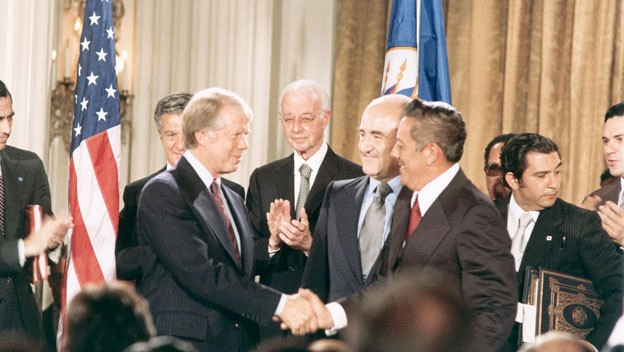
- 04 Jan 2025
In News:
Recently, Donald Trump threatened to take back the Panama Canal, calling the transfer treaty “foolish”.
Why Trump Called the Panama Canal Transfer 'Foolish'?
- Transit Fees:
- Trump expressed frustration over high transit fees imposed by the Panama Canal Authority (ACP) on U.S. vessels.
- In 2023, due to droughts affecting Lakes Gatun and Alhajuela (which are crucial for canal operations), the ACP reduced crossing slots by 36%, leading to an increase in transit fees for ships.
- Chinese Presence:
- Trump is also concerned about the growing Chinese influence in the Panama Canal region.
- In 2017, Panama became the first Latin American country to sign a Belt and Road Initiative (BRI) agreement with China, increasing Chinese investments.
- Hutchison Ports PPC, a subsidiary of a Hong Kong-based company, operates ports near the canal, raising concerns over China's influence on logistical operations and potential surveillance capabilities.
The Torrijos-Carter Treaties and Canal Transfer:
- Panama Canal Treaty (1977):
- The treaty transferred control of the Panama Canal from the U.S. to Panama by December 31, 1999.
- The U.S. would no longer control the canal, and Panama would assume full responsibility for its operation and defense.
- Permanent Neutrality Treaty (1977):
- Declared the canal to be neutral and open to vessels of all nations.
- U.S. Right to Defense: The U.S. retained the right to defend the neutrality of the canal and had priority passage in case of military emergencies.
Panama’s Response to Trump’s Criticisms:
- Defense of Transit Rates:
- President José Raúl Mulino rejected Trump’s claims, defending the transit fees as being in line with international standards and based on a transparent procedure.
- Sovereignty:
- Mulino emphasized Panama’s sovereignty over the canal, asserting that Panama’s control over the canal was non-negotiable. He categorically denied the presence of Chinese soldiers in the canal, stating that there would never be any.
China’s Response:
- China's Position:
- China's Foreign Ministry responded by emphasizing that the Panama Canal is a neutral passageway, a vital infrastructure for Panama and the global trade system.
- China affirmed its respect for Panama's sovereignty and denied any military presence in the canal area.
Implications and Future:
- Diplomatic Tensions:
- The issue of transit fees and foreign influence, particularly China's presence in the region, is likely to remain a point of diplomatic negotiation.
- Panama is expected to assert its sovereignty and seek international support to prevent any external interference in the canal’s operations.
- U.S. Influence:
- The U.S. might attempt to renegotiate terms related to the Panama Canal's operations, especially concerning transit fees and military rights, although Panama remains firm on maintaining control.
Torrijos-Carter Treaties:
- Significance:
- Panama Canal Treaty and Permanent Neutrality Treaty marked a major shift in U.S.-Latin America relations, ending U.S. control and restoring Panamanian sovereignty.
- The treaties also ensured the neutrality of the canal while maintaining U.S. military access in emergencies.
- Impact:
- The treaties were a symbol of Panama’s regained sovereignty and played a key role in stabilizing relations between the U.S. and Panama, as well as resolving tensions over control of the canal.
Centralized Pension Payments System (CPPS)
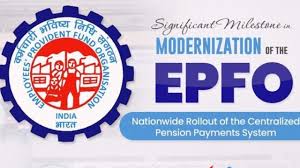
- 04 Jan 2025
In News:
- The CPPS aims to enhance pension accessibility and simplify the disbursement process for over 7.85 million pensioners in India.
- Key Benefit: Pensioners can now receive their pension from any bank or branch across India, eliminating the need for physical verifications and providing seamless nationwide pension disbursement.
Key Highlights:
- Key Features:
- No need for physical verification: Pensioners do not have to visit the bank for verification at the time of pension commencement.
- Seamless pension disbursement: Upon release, the pension amount is credited immediately.
- Nationwide access: Pensioners can withdraw their pension from any bank or branch, without needing to transfer Pension Payment Orders (PPO) when relocating or changing banks.
- Significance:
- Eliminates the decentralised pension system, where each regional office maintained separate agreements with a few banks.
- Ensures pension portability, especially for pensioners who move or change banks.
Employees’ Provident Fund Organisation (EPFO):
- Overview:
- EPFO is a statutory body under the Employees' Provident Funds and Miscellaneous Act, 1952, and works under the Ministry of Labour and Employment.
- Structure:
- Administered by a tripartite board called the Central Board of Trustees, consisting of representatives from:
- Government (Central & State)
- Employers
- Employees
- The Central Board of Trustees is chaired by the Union Minister of Labour and Employment.
- Administered by a tripartite board called the Central Board of Trustees, consisting of representatives from:
- Key Schemes Operated by EPFO:
- Employees’ Provident Funds Scheme, 1952 (EPF): A savings scheme for workers.
- Employees’ Pension Scheme, 1995 (EPS): A pension scheme for employees after retirement.
- Employees’ Deposit Linked Insurance Scheme, 1976 (EDLI): Provides life insurance coverage to workers.
- Global Coverage: EPFO is also the nodal agency for implementing Bilateral Social Security Agreements with other countries, offering reciprocal social security benefits to international workers from countries with such agreements.
- Impact: The EPFO schemes cover Indian workers and international workers from countries with which EPFO has signed bilateral agreements.
Key Facts:
- CPPS improves the convenience and accessibility of pension services for millions of pensioners across India by simplifying the pension disbursement process and providing nationwide access without the need for physical verifications.
- EPFO, a statutory body under the Ministry of Labour and Employment, plays a crucial role in managing provident funds, pensions, and insurance schemes for both domestic and international workers, fostering social security across India.
Open Data Kit (ODK) Toolkit
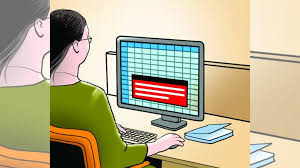
- 04 Jan 2025
In News:
- The Comptroller and Auditor General (CAG) of India has deployed the Open Data Kit (ODK) platform to enhance transparency in government spending and improve accountability in the delivery of government schemes.
- The toolkit is being used for designing, collecting, and managing data relevant to audits.
Key Highlights:
Objective:
- Enhance transparency in public spending.
- Improve accountability in government schemes and projects.
- Collect real-time beneficiary feedback to aid audit planning and identify areas needing additional review.
Key Features:
- End-to-end encryption: Ensures secure data management.
- Integration with CAG’s Operating System (OIOS): Facilitates seamless analysis and management of data.
- Multi-language support: Allows for surveys in multiple languages, making it more accessible to diverse beneficiaries.
- User-friendly interface: Simplifies the design and management of data collection processes for auditors.
Usage and Applications:
- Beneficiary surveys are a key tool for gathering data, helping CAG identify problem areas in government schemes.
- The ODK toolkit was recently deployed in audits of AIIMS institutions in Mangalagiri (Guntur) and Bibinagar (Hyderabad) to assess patient satisfaction and gather evidence for performance reviews.
Working Process:
- Surveys are designed on the ODK platform and deployed to beneficiaries.
- Data is collected in real-time and analyzed using the OIOS system to generate actionable insights for audits.
- Beneficiary feedback is used to evaluate scheme delivery and improve efficiency.
Significance:
- Facilitates data-driven decision-making in audits, ensuring that audits are more transparent and evidence-based.
- Improves the citizen-centric evaluation of government schemes by gathering direct feedback from beneficiaries.
- Enhances the performance review of key institutions like AIIMS, contributing to better service delivery.
- The introduction of the ODK toolkit is part of the CAG’s efforts to use digital tools for better governance and accountability in the public sector. This also aligns with the growing trend of using technology for governance and auditing.
Project VISTAAR

- 04 Jan 2025
In News:
IIT Madras has partnered with the Ministry of Agriculture and Farmers’ Welfare on Project VISTAAR (Virtually Integrated System to Access Agricultural Resources). MoU signed between the Ministry and IIT Madras to integrate information about agricultural start-ups into the VISTAAR platform.
Key Highlights:
Project Objectives:
- Digitalisation of Agricultural Extension: To enhance the efficiency and effectiveness of the agricultural extension system through digital platforms.
- Access to Start-Up Innovations: Provide farmers easy access to over 12,000 start-ups in agriculture and allied sectors, connecting them to technological solutions and innovations.
- Support for Sustainable Agriculture: Focus on making farming more sustainable and climate-resilient by promoting adoption of innovative technologies.
Key Features of VISTAAR:
- Integration of start-up data via IIT Madras' startup information platform and its incubatee, YNOS Venture Engine.
- Advisory services covering:
- Crop production
- Marketing
- Value addition
- Supply chain management
- Information on government schemes for agriculture, allied sectors, and rural development.
- Real-time, contextual, and accurate information to enhance decision-making and improve farming practices.
Significance of the Project:
- The platform will expand the outreach of agricultural extension services, providing support to farmers across India.
- It will ensure farmers access high-quality advisory services that are critical for improving productivity and income.
- Integration of start-up-driven innovations will aid in the adoption of climate-resilient farming practices.
- Timely and accurate information will empower farmers to make informed decisions and improve the efficiency of agricultural processes.
Impact on Farmers:
- Digitalisation will provide farmers with easier access to expert advice and resources, enhancing productivity.
- Improved access to government schemes ensures farmers can avail themselves of financial and technical support for development.
- The project aligns with national objectives of enhancing agriculture’s contribution to India’s economy and ensuring food security.
Air India In-Flight Wi-Fi Connectivity

- 04 Jan 2025
In News:
- Tata Group’s Air India launched free Wi-Fi connectivity on select domestic and international flights.
- First Indian airline to offer Internet connectivity on domestic flights.
- The service is free for a limited introductory period on select domestic flights.
- Gradual expansion of Wi-Fi availability to more aircraft in the fleet.
Key Highlights:
Aircraft with Wi-Fi:
- Available on Airbus A350, Boeing 787-9, and select Airbus A321neo aircraft.
- Aircraft equipped with special hardware for Internet connectivity.
- Some aircraft, previously operated by Vistara, now part of Air India after the merger in November.
Technology Partner:
- Vistara’s in-flight Wi-Fi was facilitated by Tata Group’s Nelco, in collaboration with Panasonic Avionics.
- This service is now extended to select Air India domestic flights.
How to Access Wi-Fi:
- Passengers enable Wi-Fi on their devices and connect to the "Air India Wi-Fi" network.
- Redirected to an Air India portal where they enter details (PNR and last name) for access.
Connectivity Technologies:
- Air-to-Ground (ATG) Technology:
- Uses ground-based cellular towers to provide internet.
- Antenna on the aircraft’s belly picks up signals from nearby towers.
- Limited by tower availability, works best over land with dense coverage.
- Satellite-Based Connectivity:
- Uses satellites to provide internet by transmitting signals from ground stations to the aircraft.
- Provides wider coverage, particularly effective over oceans and sparsely populated areas.
In-Flight Wi-Fi Operation:
- Multiple in-cabin antennas collect signals from passengers’ devices.
- Signals are sent to an onboard server.
- For satellite-based systems, signals are transmitted via an antenna to satellites and then relayed to ground stations.
- For ATG systems, signals are sent directly to ground towers.
- In-flight Wi-Fi is slower compared to ground-based internet, though newer technologies are improving speed.
Cost Considerations:
- Airlines incur high initial costs for equipping aircraft with Wi-Fi technology (antennas and hardware).
- Air India is investing in a $400 million retrofit program for its fleet, which could include installing internet connectivity.
- Some airlines install Wi-Fi on new planes, while others retro-fit older models.
Revenue Model:
- Airlines often charge for Wi-Fi after offering a small volume of free internet.
- Some airlines provide free Wi-Fi for loyalty program members or premium passengers (business/first class).
- Air India is offering free Wi-Fi for now, but plans to introduce charges at a later date.
Future Outlook:
- In-flight internet is expected to become a significant source of ancillary revenue.
- Complimentary Wi-Fi for economy class passengers is unlikely in the near-to-medium term due to high costs involved in installation and operation.
Global Context:
- In-flight connectivity is becoming standard on major full-service carriers (FSCs) worldwide.
- Air India's move aligns with global trends, as it aims to be among the world’s leading airlines.
Ramesh Chand Panel

- 03 Jan 2025
In News:
The Government of India has formed an 18-member panel, headed by Ramesh Chand, a member of NITI Aayog, to revise the base year of the Wholesale Price Index (WPI) to 2022-23 from the current base year of 2011-12. The panel will also work on a roadmap for transitioning from WPI to the Producer Price Index (PPI).
Key Highlights:
Role and Mandates of the Panel:
- Revised Commodity Basket: The panel will recommend a new commodity basket for both WPI and PPI, reflecting structural changes in the economy.
- Review of Price Collection System: The panel will evaluate the current system for price collection and propose improvements.
- Computational Methodology: It will determine the computational methodology for both WPI and PPI to ensure accuracy in tracking price changes.
- The panel has been tasked with submitting its final report to the Office of the Economic Adviser at the Department for Promotion of Industry and Internal Trade (DPIT) within 18 months.
Understanding WPI vs. PPI:
- WPI (Wholesale Price Index) tracks the price of goods at the wholesale stage (i.e., goods sold in bulk to businesses), and excludes the service sector.
- Key Characteristics of WPI:
- Does not consider consumer-facing prices.
- Excludes services (about 55% of GDP).
- Can have double-counting bias due to multiple transactions before the final sale.
- Does not account for indirect taxes and may include export/import prices.
- Use: WPI helps in tracking bulk price movements between businesses, but doesn't fully represent consumer price inflation.
- Key Characteristics of WPI:
- PPI (Producer Price Index) tracks prices at various stages of production, considering both goods and services, and measures the average change in prices received by domestic producers.
- Key Characteristics of PPI:
- Excludes indirect taxes (making it more accurate for price movement tracking).
- Includes services, unlike WPI, giving a broader view of price trends across the economy.
- More aligned with international standards (System of National Accounts).
- Reflects prices before consumer consumption, providing a business-oriented perspective of price trends.
- Key Characteristics of PPI:
Why the Transition to PPI?
- The PPI is already used by major economies like the US, China, Germany, and Japan as it provides a more comprehensive measure of inflation from a producer’s perspective.
- It is expected to be a better indicator of inflationary trends in the overall economy, including both goods and services.
Challenges and Roadmap:
- The switch to PPI is complex, and the panel will need to ensure that the transition does not disrupt the current data collection and reporting systems. Both WPI and PPI will run concurrently until PPI stabilizes.
CGWB Report on Groundwater Contamination
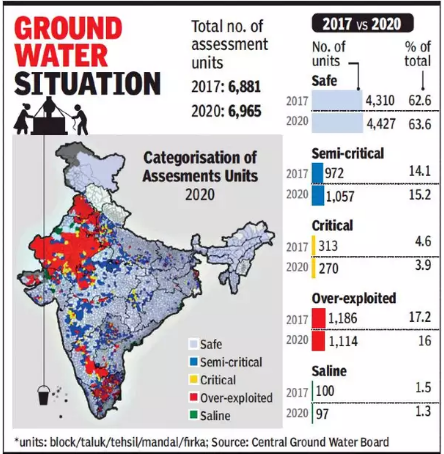
- 03 Jan 2025
In News:
The Central Ground Water Board (CGWB) report on groundwater quality reveals alarming levels of contamination in India's groundwater, with a focus on nitrate, fluoride, arsenic, and uranium. The report highlights the impact of agricultural practices, poor waste management, and urbanisation on water quality.
Key Highlights:
Nitrate Contamination:
- 440 districts in India report excessive nitrate levels in groundwater, with 20% of samples exceeding the permissible nitrate limit of 45 mg/L (WHO and BIS standards).
- High-risk regions: Rajasthan (49%), Karnataka (48%), and Tamil Nadu (37%) are the top states with high nitrate levels. Other affected states include Maharashtra, Telangana, Andhra Pradesh, and Madhya Pradesh.
- Causes: Nitrate contamination is mainly due to excessive use of nitrogen-based fertilizers, over-irrigation, and poor management of animal waste. Urbanisation and improper sewage systems exacerbate the problem.
Other Groundwater Contaminants:
- Fluoride contamination: A significant concern in Rajasthan, Haryana, Karnataka, Andhra Pradesh, and Telangana.
- Arsenic contamination: Elevated arsenic levels found in several states, especially in floodplains of the Ganga and Brahmaputra rivers (West Bengal, Jharkhand, Bihar, Uttar Pradesh, Assam, and Manipur).
- Uranium contamination: 42% of uranium-contaminated samples are from Rajasthan, and 30% from Punjab. Chronic exposure to uranium leads to kidney damage.
Groundwater Extraction and Availability:
- 60.4% of groundwater is being extracted across India.
- 73% of groundwater blocks are classified as in the ‘safe’ zone, an improvement from 67.4% in 2022.
Monsoon Impact:
- Nitrate contamination increases post-monsoon, with 32.66% of samples exceeding safe limits during the rainy season.
Health Implications:
- High nitrate levels, particularly dangerous for infants, can cause blue baby syndrome (methemoglobinemia).
- Long-term exposure to contaminants like fluoride and arsenic can lead to fluorosis and increase the risk of cancers and skin lesions.
Sources of Contamination:
- Agricultural practices: Excessive use of fertilizers, pesticides, and improper irrigation.
- Waste disposal: Leaking septic systems, sewage, and hazardous waste sites contribute to contamination.
- Urbanisation: Increased wastewater and sewage, along with poor waste management, worsen the issue.
Measures to Address Contamination:
- Jal Shakti Abhiyan (JSA) and Atal Bhujal Yojana (ABHY) aim to conserve and manage groundwater resources.
- National Aquifer Mapping and Management Program (NAQUIM) to assess and map aquifer systems.
- Pollution control programs: Under the Water (Prevention & Control) Act, 1974, and initiatives like sewage treatment plants and effluent treatment plants to manage wastewater.
- Public awareness: Campaigns like Swachh Bharat Mission and Catch the Rain educate communities on the importance of groundwater conservation.
Key Statistics:
- 56% of districts in India report groundwater nitrate levels exceeding the safe limit of 45 mg/L.
- Monsoon effects: Post-monsoon data shows a significant increase in contamination levels (32.66% vs. 30.77% pre-monsoon).
National e-Governance Awards (NAeG) Scheme 2025
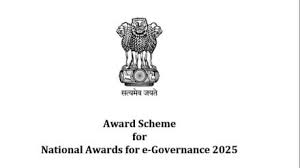
- 03 Jan 2025
In News:
- The Department of Administrative Reforms & Public Grievances (DARPG) has issued the guidelines for the 28th National e-Governance Awards (NAeG) 2025.
- Nominations for the awards can be submitted online via the official portal: www.nceg.gov.in.
Key Highlights:
- Award Categories: Nominations for the awards can be submitted under the following six categories:
- Government Process Re-engineering: Digital transformation through the use of technology to improve government processes.
- Innovation by Use of AI and New Age Technologies: Fostering citizen-centric services via artificial intelligence and other modern technologies.
- Best e-Gov Practices in Cyber Security: Recognizing excellence in e-Governance practices focused on cybersecurity.
- Grassroot Level Initiatives: Initiatives at the Districts, ULBs (Urban Local Bodies), or Gram Panchayats that deepen service delivery.
- Replication and Scaling Up of Successful Projects: Projects awarded in the past (such as NAeG or Prime Minister’s Awards) that have been successfully replicated or scaled.
- Digital Transformation using Data Analytics: Projects that leverage data analytics on digital platforms for enhancing governance.
- Eligibility: The awards are open to Central Ministries/Departments, State Governments, District Collectors, Research Institutions, and other relevant entities.
- Award Details:
- The NAeG 2025 will feature 16 awards:
- 10 Gold Awards.
- 6 Silver Awards.
- The NAeG 2025 will feature 16 awards:
- Incentives:
- Gold Award winners will receive a Trophy, Certificate, and an incentive of Rs 10 lakh.
- Silver Award winners will receive a Trophy, Certificate, and an incentive of Rs 5 lakh.
- The incentive will be used for further implementation of the awarded projects or bridging resource gaps in public welfare.
- Objective: The goal of the National Awards for e-Governance is to recognize and promote excellence in the implementation of e-Governance initiatives and digital transformation efforts across India.
Tinnitus
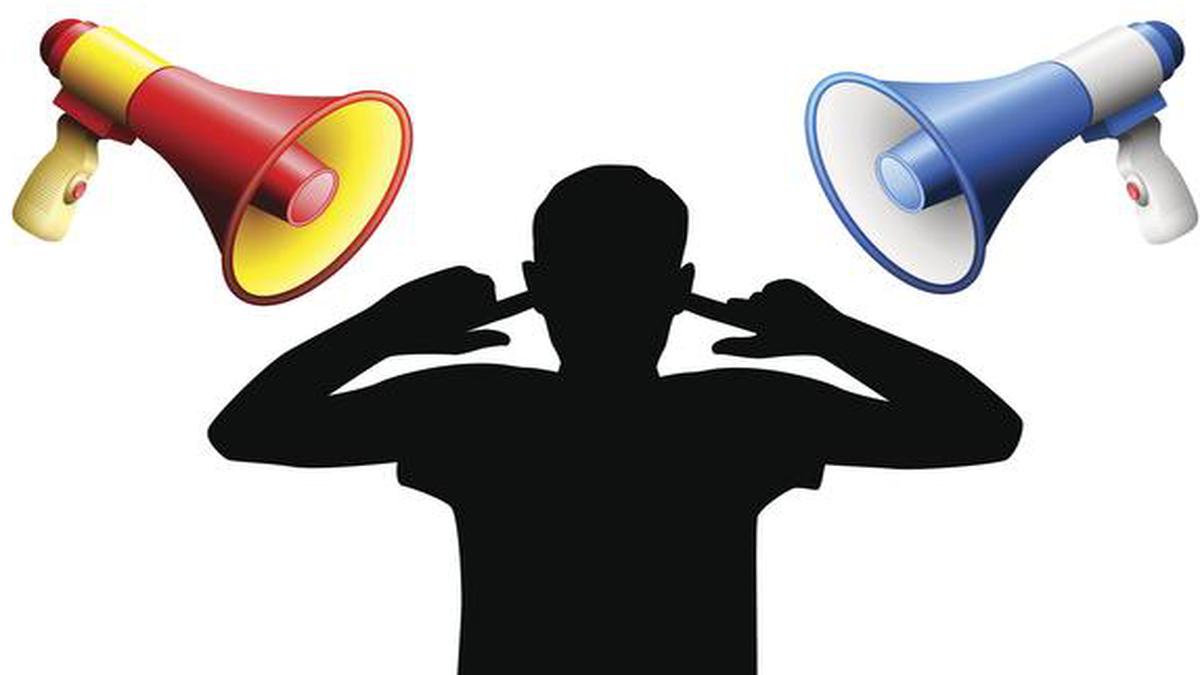
- 03 Jan 2025
In News:
Researchers at IIT Bombay have created an affordable device to diagnose and manage tinnitus, a condition involving persistent ringing or buzzing in the ears. The device offers personalized treatment solutions and a comprehensive approach to managing tinnitus.
What is Tinnitus?
- Tinnitus is the perception of sound in the absence of external noise, meaning only the affected individual hears it. It is often caused by underlying conditions such as age-related hearing loss, ear injury, or circulatory system problems.
- It affects over 740 million adults globally, with 120 million experiencing severe symptoms (JAMA Neurology, 2022).
- Common symptoms include sleep disturbances, depression, anxiety, irritability, and significant impacts on mental health and social life.
- Treatment may include: Hearing aids, sound-masking devices, medications, and coping techniques to manage the noise.
Device Features:
- Precise Tinnitus Matching: Identifies the exact nature and frequency of sounds experienced by the patient.
- Customizable Treatment: Provides a tailored, multimodal approach to treatment, ensuring each patient gets a unique experience.
- Tracking Progress: Includes tools to monitor disease progression and patient improvement over time.
Affordability and Accessibility:
- The device is cost-effective, addressing the issue of high costs associated with current tinnitus management solutions.
- This breakthrough is especially beneficial for low-income regions, where access to expensive tinnitus treatment is limited.
Impact on Healthcare:
- The device empowers doctors with precise diagnostic tools, improving the accuracy of diagnosis and the efficacy of treatment.
- It aims to enhance patient quality of life by offering an affordable and accessible solution to tinnitus management.
Funding and Development:
- The project has received funding from Tata Centre for Technology and Design (TCTD), IIT Bombay, and Wadhwani Research Centre for Bioengineering (WRCB).
Significance:
- This development represents a technological advancement in tinnitus care, with the potential to greatly reduce the burden of the condition and improve the well-being of affected individuals worldwide.
Quad 20th Anniversary
- 03 Jan 2025
In News:
Quad Foreign Ministers reaffirmed their commitment to a free, open, and peaceful Indo-Pacific. Marked the 20th anniversary of Quad cooperation, originally formed to respond to the 2004 Indian Ocean earthquake and tsunami.
Key Highlights:
- What is the Quad?
- A strategic forum of the US, Japan, India, and Australia aimed at regional security and economic cooperation in the Indo-Pacific region.
- Founded on shared principles of democracy, human rights, rule of law, and countering China's influence.
- Origins:
- Quad traces its origins to the 2004 Tsunami relief efforts.
- Formed formally in 2007, but Australia withdrew in 2008 due to regional tensions. It rejoined in 2017 following strengthened US-Australia ties.
- Commitment to Regional Security:
- Focus on countering China’s assertive behavior in the Indo-Pacific.
- Ensuring maritime security, countering illegal fishing, promoting infrastructure, and advancing economic cooperation.
- Key Initiatives:
- IPMDA: Real-time monitoring of maritime activities.
- MAITRI: Capacity-building for maritime security.
- Quad Fellowship: Funds graduate-level STEM education in member countries.
- Open RAN: Promoting secure 5G infrastructure.
- Cancer Moonshot: Focus on cervical cancer prevention.
- Military and Naval Cooperation:
- Malabar Exercises: Joint naval drills between India, Japan, the US, and Australia.
- ASEAN and Regional Cooperation:
- Emphasis on ASEAN's central role in the Indo-Pacific region.
- Support for the Pacific Islands Forum and the Indian Ocean Rim Association (IORA).
- Future Developments:
- India to host the next Quad Summit in 2025.
- Continued focus on sustainable regional development, scientific collaboration, and disaster relief efforts.
- Significance of the Quad for India:
- Strategic Importance:
- Provides a platform to counter China's assertive policies, especially in the South China Sea and the "String of Pearls" strategy.
- Aligns with India’s Act East Policy, enhancing ties with East and Southeast Asia.
- Maritime Security: Ensures freedom of navigation and counters illegal activities like piracy and illegal fishing in India’s maritime domain.
- Economic Opportunities:
- Strengthens cooperation on infrastructure projects and trade initiatives, such as the Blue Dot Network.
- Post-COVID, Quad may aid India in attracting manufacturing units shifting from China.
- Scientific and People-to-People Collaboration: Supports STEM education and enhances soft power diplomacy through academic and cultural exchanges.
Rapid Chess Championship
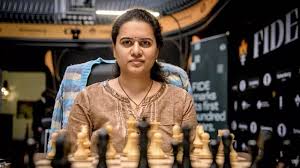
- 02 Jan 2025
In News:
In a monumental achievement, Koneru Humpy from Vijayawada, India, claimed the 2024 FIDE Women’s World Rapid Chess Championship in New York. This victory marks her second World Rapid Chess title, five years after her first win in 2019 in Georgia, making her the first Indian and only the second player after China’s Ju Wenjun to win the title multiple times.
Key Highlights of Humpy’s Victory:
- Final Score: Humpy finished with an impressive 8.5 points from 11 rounds, securing the top spot by defeating Irene Sukandar of Indonesia in the final round.
- Strong Finish: Humpy surged ahead of the other joint leaders to clinch the title, with D. Harika, another Indian chess star, securing 5th place with 8 points.
World Rapid Chess Championship
- The World Rapid Chess Championship is a chess tournament that determines the world's top rapid chess player. The tournament is held annually by FIDE, the International Chess Federation.
- How it works
- The tournament uses a Swiss system, where players are paired with opponents of similar scores in each round.
- Players are not eliminated after losses.
- The player with the highest score at the end of the tournament wins.
- Time controls
- Players are given a set amount of time per move, plus an increment for each move.
- In the World Rapid Championship, players have 15 minutes per move, plus a 10-second increment for each move.
A Historic Year for Indian Chess:
- 2024 has been a remarkable year for Indian chess, with D. Gukesh becoming the youngest-ever World Chess Champion after his victory over Ding Liren (China) at the World Chess Championship in Singapore.
- India also made history by winning both the open and women’s sections at the 2024 Chess Olympiad in Budapest.
H-1B Visa
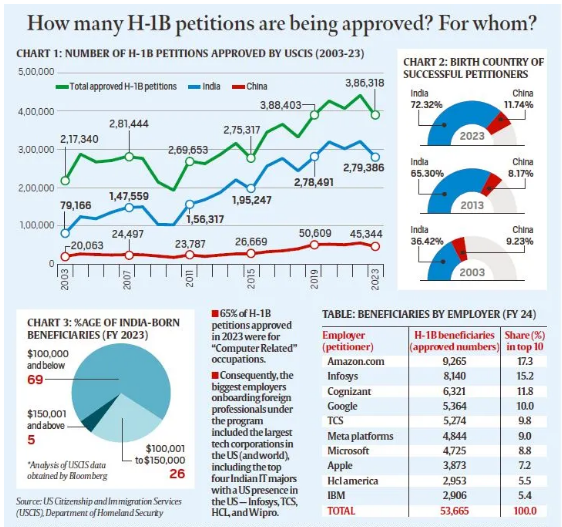
- 02 Jan 2025
In News:
In the weeks leading up to his return as US President, Donald Trump’s supporters are embroiled in a public dispute over skilled immigration and H-1B visas.
What is the H-1B Visa Program?
- Purpose and Overview:
- The H-1B visa is a non-immigrant visa allowing U.S. companies to employ foreign workers in specialized occupations like STEM (Science, Technology, Engineering, Mathematics) and IT, which require at least a bachelor’s degree.
- Introduced in 1990 to help U.S. employers fill positions when there’s a shortage of qualified domestic workers.
- It allows workers to stay in the U.S. for a maximum of six years, with the option to apply for permanent residence (Green Card) or leave for 12 months before reapplying.
- Annual Cap and Exemptions:
- 65,000 new visas are issued annually, with an additional 20,000 for those with a master’s degree or higher from a U.S. university.
- Certain petitions, such as for continuing employment or positions in higher education or nonprofit research, are exempt from the cap.
- Dominance of Indian Beneficiaries:
- Indians are the largest beneficiaries, accounting for over 70% of H-1B visa approvals annually since 2015, with China coming second at around 12-13%.
The Current Controversy
- Trigger for Debate:
- The controversy was sparked by Sriram Krishnan, a Chennai-born tech entrepreneur appointed as Donald Trump’s top AI adviser. His post on X (formerly Twitter) in November 2024, advocating for unlocking skilled immigration, led to backlash within Trump’s anti-immigration base.
- The Political Divide:
- Trump’s supporters, particularly from the MAGA (Make America Great Again) faction, voiced opposition to the H-1B visa program, arguing it undermines American workers and wages.
- This prompted pushback from pro-H-1B advocates like Elon Musk and Vivek Ramaswamy, who argue that the program is crucial for addressing the U.S.'s STEM talent shortages.
- Economic and Political Context:
- Immigration is a polarizing issue in the U.S., with a focus on low-skilled labor migration and its alleged effects on wages and job opportunities for American workers.
- Trump’s stance against low-skilled immigration echoes similar critiques about H-1B workers being employed at lower salaries in tech companies, which some claim depresses wages and reduces job opportunities for U.S. workers.
Criticisms of the H-1B Program
- Abuse of the System:
- Critics argue that companies exploit the H-1B program by hiring foreign workers, especially from India, at lower wages than American employees, particularly in tech industries.
- Elon Musk suggests that the program is “broken” and needs reform, proposing raising the minimum salary for H-1B workers to make it more expensive to hire overseas talent.
- Salary Disparities:
- Data from USCIS (U.S. Citizenship and Immigration Services) shows that 70% of H-1B petitions for Indian professionals in 2023 were for salaries below $100,000, while the median salary for U.S. IT professionals was $104,420.
- Impact on American Jobs:
- Critics argue that companies prefer to hire foreign workers at lower wages to save costs, despite the availability of qualified U.S. talent, thus taking away opportunities for American workers.
Support for the H-1B Program
- Filling the STEM Gap:
- Proponents, including Musk and Ramaswamy, argue that the H-1B visa is essential for filling the STEM skills gap in the U.S., given the global dominance of India and China in STEM fields.
- India and China lead the world in STEM graduates, with 2.55 million and 3.57 million, respectively, compared to the U.S. with 820,000.
- Proponents, including Musk and Ramaswamy, argue that the H-1B visa is essential for filling the STEM skills gap in the U.S., given the global dominance of India and China in STEM fields.
- Economic Benefits:
- The H-1B program helps U.S. companies access top global talent, boosting innovation and economic growth, especially in high-tech industries.
- Tech companies argue that without access to skilled foreign workers, they would struggle to fill critical positions in the technology sector.
Tamil Nadu's First Glass Bridge in Kanyakumari
- 02 Jan 2025
In News:
- The Chief Minister of Tamil Nadu inaugurated India’s first glass bridge over the sea in Kanyakumari, connecting the Thiruvalluvar Statue and the Vivekananda Rock Memorial.
- The bridge provides a safe and scenic walking route between these two iconic landmarks, eliminating the need for ferry trips.
Key Highlights:
- Dimensions and Design
- The bridge is 77 meters long and 10 meters wide, offering uninterrupted views of the sea from a unique vantage point.
- Designed to withstand marine conditions like corrosion and strong winds, ensuring durability and safety for visitors.
- Tourism Investment
- The bridge was built at a cost of ?37 crore, marking a significant investment in tourism infrastructure for Kanyakumari.
- This project aligns with the state’s vision to boost tourism and modernize amenities in the region.
- Significance as a Tourist Attraction
- The bridge is set to become a landmark tourist attraction, enhancing the visitor experience by providing a direct, scenic route between the two monuments.
- It is expected to play a pivotal role in boosting tourist footfall and the local economy.
About Thiruvalluvar Statue
- Location and Design
- The Thiruvalluvar Statue stands on a rock near the Vivekananda Rock Memorial in Kanyakumari.
- It is a symbol of wisdom, officially named the Statue of Wisdom by the Tamil Nadu government.
- Physical Specifications
- The statue stands at a total height of 133 feet (41 meters), with the statue itself measuring 95 feet (29 meters) and the pedestal adding 38 feet (12 meters).
- Weight: The statue weighs approximately 7000 tonnes and is designed in a hollow structure.
About Vivekananda Rock Memorial
- Location and Significance
- Situated on a rock in the Laccadive Sea, around 500 meters from the mainland in Kanyakumari.
- The memorial commemorates Swami Vivekananda, who represented India’s spiritual legacy at the 1893 Parliament of World’s Religions in Chicago.
- Historical and Religious Importance
- The rock is believed to be the site where Swami Vivekananda attained enlightenment.
- It is also associated with goddess Kanyakumari, who is said to have prayed to Lord Shiva on this rock, with an imprint of her feet preserved there.
- Architectural Features
- The memorial incorporates diverse architectural styles, including the Sripada Mandapam and the Vivekananda Mandapam.
- A life-sized bronze statue of Swami Vivekananda is located at the memorial.
- The rock is surrounded by the Bay of Bengal, Indian Ocean, and Arabian Sea, where these three water bodies converge.
Business Ready (B-READY) Report 2024

- 02 Jan 2025
In News:
- The B-READY report, launched by the World Bank in 2024, replaces the Ease of Doing Business (EoDB) index.
- Focus: It evaluates the global business environment to foster inclusive private sector growth, assessing 10 core topics covering a firm's lifecycle, such as business entry, taxation, labor, and international trade.
India’s Potential Challenges
- Business Entry: India faces multiple steps and incomplete digital integration, making it slower compared to benchmarks like Singapore, which achieves one-day registration at minimal cost.
- Labor Regulations: While India has introduced four labor codes, the implementation remains slow and inconsistent, affecting labor flexibility and compliance.
- International Trade: India struggles with customs delays, inconsistent enforcement, and high logistics costs, unlike countries like Germany and Singapore, which promote trade efficiently.
- Business Location: Regulatory delays and inconsistent approvals hinder the establishment of business facilities, affecting investment decisions.
- Public Services Gap: While regulations may be strong, there is often a gap in the provision of public services that support their effective implementation, leading to inefficiencies.
Key Strengths for India
- India is expected to score well in the areas of Quality of Regulations, Effectiveness of Public Services, and Operational Efficiency.
- The country shows promise in promoting digital adoption and aligning with global environmental sustainability practices, though gender-sensitive regulations need more emphasis.
Significance
- The B-READY report serves as an essential benchmark for assessing India's business environment, offering insights into regulatory reforms and operational efficiency.
- Key policy implications for India include the need to:
- Streamline business operations by digitizing registration and regulatory approval processes.
- Improve logistics and trade efficiency by reducing customs delays.
- Address labor market inefficiencies through better implementation of labor codes.
- Invest in public services and promote digital transformation for better compliance and operational ease.
- Focus on sustainability and inclusivity, ensuring gender-sensitive policies and fostering green business practices.
Global Findings from the B-READY Report
- Economies with strong regulatory frameworks and digital tools (e.g., Rwanda, Georgia) show that even countries with varying income levels can achieve high scores.
- High-income countries like Estonia and Singapore still have room for improvement, especially in areas like taxation and dispute resolution.
Comparison of B-READY with Ease of Doing Business (EoDB)
- Scope: B-READY is broader, covering a firm’s lifecycle and social benefits, while EoDB focused mainly on regulatory burdens.
- Indicators: B-READY uses 1,200 indicators from expert consultations and firm-level surveys, offering more comprehensive insights compared to the EoDB's limited metrics.
- Focus on Public Services: Unlike EoDB, which provided limited attention to public services, B-READY explicitly evaluates public service efficiency and operational effectiveness.
Policy Recommendations
- Streamline Business Operations: Inspired by countries like Singapore, India should simplify business registration and reduce delays in customs and regulatory approvals.
- Strengthen Public Services: Focus on improving tax portals, utility access, and dispute resolution systems through digital tools.
- Promote Sustainability: Encourage environmentally sustainable business practices and adopt gender-sensitive regulations to ensure inclusive growth.
- Peer Learning and Global Collaboration: Encourage India to learn from best practices in countries like Singapore and Estonia for effective reforms.
- Tailored Reforms: India must design policies addressing unique local challenges while adhering to global standards.
Stellaria bengalensis

- 02 Jan 2025
In News:
After a plant species of the genus Stellaria (family Caryophyllaceae) was reported from Kerala earlier this year, researchers have identified another member of the same genus at Kalimpong district in West Bengal.
Key Highlights:
Discovery and Identification:
- Published: The discovery was published in Phytotaxa.
- Location: Found in Kalimpong district, West Bengal, at altitudes of 2,245-2,450 metres in the Sangser forest.
- Named: The species is named Stellaria bengalensis after the state of West Bengal.
Taxonomy and Characteristics:
- Family: Caryophyllaceae.
- Type: Annual herb.
- Size: Grows to a height of 8 to 10.5 cm.
- Flowers: White in color, with shorter petals, often included within the sepal, and absence of bracts.
- Seeds: Sharp and pointed.
- Flowering and Fruiting: Occurs from May to September.
Distribution:
- Region: Primarily found in the Himalayan region.
- Similar Species: Stellaria mcclintockiae, identified earlier in Kerala (Nelliyampathy Hills).
- Both species grow in muddy soil slopes and are annuals.
Conservation Status:
- Under IUCN (International Union for Conservation of Nature) criteria, the species is assessed as "data deficient", pending further studies.
- Potential Habitat: There is a possibility of finding more populations in the western Himalayas.
Significance:
- Stellaria bengalensis is the second Stellaria species reported in India in 2025.
- India is home to about 22 Stellaria species, predominantly found in the Himalayan region.
- The discovery adds to biodiversity knowledge in India and underscores the importance of studying plant species in the region.
Smart Cities Mission (SCM)

- 31 Dec 2024
In News:
The introduction of smart classrooms as part of the Smart Cities Mission (SCM) has had a significant impact on education, leading to a 22% increase in enrolment across 19 cities, according to a report from the Indian Institute of Management, Bangalore (IIM-B). The study covers the period from 2015-16 to 2023-24 and highlights several key benefits of this initiative, which aims to improve the overall learning environment in government schools.
Key Findings:
- Increased Enrolment: The introduction of smart classrooms has been linked to a 22% increase in student enrolment across 19 cities, suggesting that the initiative has made education more appealing and accessible.
- Smart Classroom Development: By 2023-24, 71 cities had developed 9,433 smart classrooms in 2,398 government schools. The states with the most smart classrooms are:
- Karnataka (80 classrooms)
- Rajasthan (53 classrooms)
- Tamil Nadu (23 classrooms)
- Delhi (12 classrooms)
- West Bengal has a very limited number, with just two classrooms.
- Improved Learning Experience: Teachers have expressed positive feedback, agreeing that the smart classrooms have improved learning experiences and attendance among students. Additionally, the smart classroom setup has contributed to increased comfort for teachers and higher preference for these modern facilities.
- Teacher Training: Special training provided to teachers has enhanced their comfort with using the smart classroom tools, with senior secondary teachers showing the highest comfort levels.
- Digital Libraries: The study also found that 41 cities have developed Digital Libraries with 7,809 seating capacity, offering essential resources for students. Cities like Raipur (Chhattisgarh) and Tumakuru (Karnataka) have seen positive outcomes from these libraries, particularly in supporting students preparing for competitive exams.
Smart Cities Mission (SCM)
- Launched in June 2015, the Smart Cities Mission aims to promote cities that offer core infrastructure, a decent quality of life, a sustainable environment, and the application of smart solutions. As of November 2024, 91% of the projects under the mission have been completed.
SAAR Platform and Research
- In 2022, the Smart Cities Mission introduced the SAAR (Smart Cities and Academia towards Action and Research) platform to bridge the gap between academia and the government. Under this platform, 50 impact assessment studies have been initiated by 29 premier institutions, including six Indian Institutes of Management (IIMs), eight Indian Institutes of Technology (IITs), and 12 specialized research institutes.
Metabolic Dysfunction-Associated Steatotic Liver Disease (MASLD)
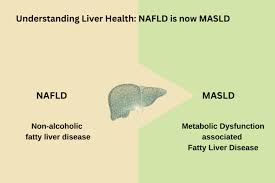
- 31 Dec 2024
In News:
Non-alcoholic fatty liver disease (NAFLD) has recently been renamed MASLD (Metabolic Dysfunction-Associated Steatotic Liver Disease), reflecting a shift in understanding of the disease's root causes and its broader implications.
Why the Name Change?
- The primary reason for renaming NAFLD to MASLD is to highlight the metabolic dysfunction as the primary cause of the disease.
- Previously, the term NAFLD focused on the absence of alcohol consumption, which inadvertently shifted attention away from the true contributors, like obesity, type 2 diabetes, and abnormal cholesterol levels.
- The term MASLD eliminates the stigma associated with "non-alcoholic," which may have misled people into thinking alcohol consumption was the only factor, even though metabolic issues are the central cause.
- The term MASLD shifts the focus towards metabolic dysfunction, making it easier for healthcare professionals to understand, diagnose, and treat the condition more effectively.
The Connection to Metabolic Dysfunction
- MASLD is strongly associated with metabolic issues such as abdominal obesity, insulin resistance, and high blood sugar. These metabolic problems are key contributors to liver fat accumulation.
- People with abdominal obesity are 2-3 times more likely to develop fatty liver disease. MASLD affects about 25% of the global population, and the rates increase significantly (up to 50-70%) in individuals with type 2 diabetes or obesity.
- By focusing on metabolic dysfunction, MASLD encourages addressing the root causes rather than just the symptoms, offering a more effective approach to treatment and prevention.
How is MASLD Diagnosed?
Advancements in non-invasive diagnostic methods have improved the ability to diagnose MASLD more easily and accurately, including:
- FibroScan: A non-invasive, painless test to measure liver fat and stiffness, replacing the need for liver biopsy.
- MRI and Ultrasound Techniques: Reliable methods for assessing liver fat and scarring.
- Blood Tests: Common tests like ALT, AST, and GGT assess liver function. Researchers are also exploring new markers like CK-18 fragments and the ELF score (Enhanced Liver Fibrosis) to improve diagnostic accuracy.
Implications for Patient Care
The renaming of NAFLD to MASLD has important implications for patient care:
- Targeted Treatments: By focusing on the metabolic roots, treatments such as weight loss, blood sugar management, and cholesterol control can be prioritized. These interventions help reduce the risk of long-term complications such as heart disease, liver failure, and cirrhosis.
- Earlier Diagnosis: MASLD encourages earlier recognition of the condition, which can lead to better management and improved long-term outcomes.
Prevention
Preventing MASLD involves avoiding foods that exacerbate liver fat buildup. Dr. Punit Singla, director at Marengo Asia Hospitals, emphasizes limiting or avoiding:
- Fast food, junk food, and processed foods
- Foods high in sugar, including red and processed meats
A healthier lifestyle with a balanced diet rich in whole grains, fruits, vegetables, and lean proteins can significantly help prevent or manage MASLD.
61st Raising Day
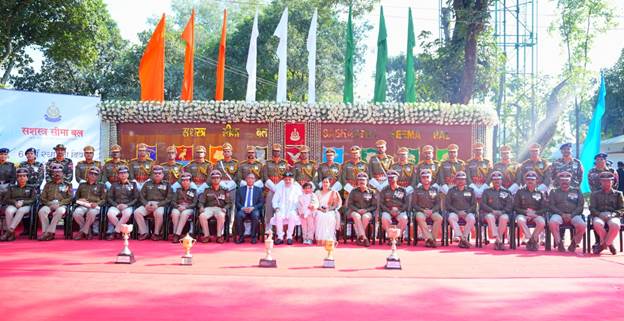
- 31 Dec 2024
In News:
On December 20, 2024, Union Home Minister Shri Amit Shah attended the 61st Raising Day function of the Sashastra Seema Bal (SSB) in Siliguri, West Bengal. During the event, he e-inaugurated the Integrated Check Point (ICP) Agartala and a newly constructed residential complex for the Border Guard Force (BGF) at Petrapole. The event was attended by several dignitaries, including the Director of Intelligence Bureau (IB), Secretary of Border Management (MHA), and the Director-General of SSB.
Key Highlights from the Speech:
- Tributes to Martyrs: Shri Shah paid tributes to SSB martyrs, highlighting their sacrifices in protecting the country's borders and eliminating Left Wing Extremism in the eastern region. He acknowledged the 4 Padma Shri, 1 Kirti Chakra, and other national awards received by SSB for their exceptional service.
- Role in Connecting Borders: The Home Minister praised SSB’s role in connecting the culture, language, and heritage of border villages with mainstream India. He emphasized that the SSB has fulfilled its motto of "Service, Security, and Brotherhood" while maintaining a strong relationship with Nepal and Bhutan.
- Security and Vigilance: SSB is responsible for securing a 2,450 km border with Nepal and Bhutan. Shri Shah noted that SSB's vigilance has helped in stopping narcotics, arms smuggling, and human trafficking. Additionally, the force has worked to ensure that Bihar and Jharkhand are now Naxal-free.
- Zero-Tolerance Policy: The SSB has a zero-tolerance policy on encroachments, narcotics, and smuggling. Over the last three years, the SSB successfully removed more than 1,100 encroachments from government land and seized significant amounts of narcotics, weapons, and counterfeit currency.
- Impact in Jammu & Kashmir: SSB has played a critical role in combating terrorism in Jammu and Kashmir, killing more than 19 terrorists and arresting 14 through various operations.
- Humanitarian Efforts: Besides security, SSB has actively participated in disaster relief operations during floods and landslides, often at great personal risk.
- Government Schemes for CAPF Personnel: Under the leadership of Prime Minister Narendra Modi, various welfare schemes like Ayushman Cards, CAPF e-Housing, and scholarships have been launched to support CAPF personnel and their families.
- Self-Employment Initiatives: SSB has promoted self-employment for border youth, training them in areas like beekeeping, mobile repairing, and driving. They have also contributed significantly to the Nasha Mukt Bharat Abhiyan, creating awareness about drug addiction among 36,000 youth.
- Environmental Contribution: The force has planted over 6 crore trees as part of its environmental efforts.
Pegasus Spyware

- 31 Dec 2024
In News:
For the first time, a court in the US has held Israel’s NSO Group liable for its intrusive spyware Pegasus, which could set up a measure of accountability for the company that it has, for long, allegedly downplayed.
Overview:
- Pegasus is a spyware developed by the Israeli company NSO Group.
- It has been used for surveillance, allegedly targeting journalists, activists, politicians, and government officials across the world, including India.
Recent Legal Developments:
- US Court Ruling (2024):
- A US court held NSO Group liable for using Pegasus to surveil 1,400 WhatsApp users, including 300 from India.
- NSO Group violated the Computer Fraud and Abuse Act (CFAA) and the California Computer Data Access and Fraud Act (CDAFA).
- The ruling may revive debates on the accountability of spyware use and its implications on privacy.
Use of Pegasus in India:
- Targeted Individuals (2021):
- 300 Indian numbers allegedly targeted, including journalists, politicians, Union Ministers, and civil society members.
- High-profile targets included opposition leaders, constitutional authorities, and activists.
- Government Denial:
- The Indian government denied involvement, stating allegations lacked substance.
- In Parliament, IT Minister Ashwini Vaishnaw rejected claims, asserting India’s surveillance laws prevent unauthorized surveillance.
- NSO Group Response:
- NSO Group denied the allegations, calling them “false and misleading” and citing doubts about the sources.
Investigations and Legal Actions:
- Supreme Court Inquiry:
- The Supreme Court appointed a committee of technical experts in 2021 to investigate claims.
- August 2022 Report: Found no conclusive evidence of spyware use on examined devices but noted lack of cooperation from the government.
- State-Level Investigations:
- West Bengal: Set up a Commission of Inquiry into Pegasus surveillance, later halted by the Supreme Court.
- Andhra Pradesh: The issue became political, with allegations that the previous government used Pegasus to monitor opposition figures.
Pegasus Spyware Features:
- Capability: Can hack iOS and Android devices to collect data, record conversations, capture photos, and access app data.
- Exploitation Method: Uses zero-day vulnerabilities to exploit iOS and Android devices covertly.
- Invisibility: Operates without user knowledge, often only detected through signs like browser closings after phishing links are clicked.
Controversial Use of Pegasus:
- Global Use: Though intended for fighting terrorism and crime, Pegasus has been misused for spying on journalists, politicians, human rights activists, and opposition leaders.
- India Specifics:
- Pegasus Project: Targeted Indian citizens, including activists, journalists, and politicians.
- Amnesty International: Confirmed use of Pegasus to target Indian phones.
India's Legal Framework for Surveillance:
- Telecommunications Act (2023): Empowers the government to control telecom services during emergencies, but requires authorization for lawful interceptions.
- IT Act (2000): Allows the government to monitor, intercept, or decrypt information through computer resources under certain conditions.
- Digital Personal Data Protection (DPDP) Act (2023): Aims to protect personal data, including provisions on surveillance, data breaches, and rights of individuals over their data.
Privacy and Surveillance Concerns:
- Impact on Fundamental Rights:
- Surveillance infringes on the right to privacy under Article 21 of the Constitution.
- Freedom of speech and expression (Article 19) may be curtailed, with surveillance being used to suppress dissent.
- Lack of Transparency:
- Surveillance often occurs without judicial or parliamentary oversight, leading to potential executive overreach.
- Inability to Seek Legal Remedies:
- Citizens targeted by surveillance cannot challenge it due to lack of awareness, undermining constitutional rights.
- Executive Overreach and Suppression of Free Expression:
- Pegasus revelations have raised concerns about surveillance targeting constitutional functionaries, suppressing free speech, and stifling open discourse.
India-Australia Economic Cooperation and Trade Agreement (Ind-Aus ECTA)
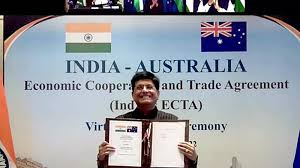
- 31 Dec 2024
In News:
The India-Australia Economic Cooperation and Trade Agreement (Ind-Aus ECTA) completes two years of remarkable success, driving mutual growth and showcasing the complementarity of both economies.
Key Achievements:
- Bilateral Merchandise Trade Surge:
- Trade increased from USD 12.2 billion (2020-21) to USD 26 billion (2022-23).
- Trade moderated slightly in 2023-24 to USD 24 billion, but exports from India to Australia grew by 14%.
- From April-November 2024, bilateral trade reached USD 16.3 billion.
- Preferential Import Utilization:
- Export utilization: 79%
- Import utilization: 84%
- Sectoral Growth:
- Textiles, chemicals, and agriculture sectors have seen significant growth.
- New export products: Gold studded with diamonds, turbojets.
- India’s imports: Metalliferous ores, cotton, wood products that fuel Indian industries.
- Geopolitical Strengthening:
- Enhanced relations in forums like Quad, Indo-Pacific Economic Framework (IPEF), Supply Chain Resilience Initiative (SCRI).
Key Features of the Agreement:
- Tariff Reductions:
- Australian goods: 85% tariff-free access to India (rising to 90% by 2026).
- Indian goods: 96% tariff-free access to Australia (rising to 100% by 2026).
- Access to Key Markets:
- India: Access to Australia's fast-growing market.
- Australia: Access to India's labor-intensive sectors like gems, jewelry, textiles, leather, furniture, food, agriculture.
- Services and IT:
- 135 sub-sectors covered in services.
- India gains market access in 103 sub-sectors with Most Favoured Nation (MFN) status in 31.
- Fast-tracked approval of medicines and elimination of double taxation for India's IT sector.
- Job Creation & Skill Exchange:
- Expected creation of 1 million jobs in India.
- Opportunities for Indian yoga teachers, chefs, and 100,000 students with post-study work visas.
Future Prospects:
- Comprehensive Economic Cooperation Agreement (CECA): Builds on ECTA to advance bilateral trade, with 10 formal rounds and ongoing inter-sessional discussions.
- Trade Target: Aim to reach AUD 100 billion in trade by 2030.
- Global Economic Impact: Strengthening the partnership will contribute to a more resilient and dynamic global economy, with deeper economic integration between India and Australia.
World Audio Visual & Entertainment Summit (WAVES) 2025

- 30 Dec 2024
In News:
India to Host World Audio Visual & Entertainment Summit (WAVES) 2025.
Key Highlights:
- Purpose: The summit aims to bolster India's media and entertainment (M&E) industry, expand its global influence, and foster innovation and collaboration within the sector.
- Significance: First-ever global summit to cover the entire media and entertainment industry spectrum.
- Objective:
- Foster Dialogue and Trade: WAVES aims to be a premier platform for industry leaders, stakeholders, and innovators to engage in meaningful discussions, explore opportunities, and tackle challenges in the M&E sector.
- Promote India's M&E Industry: Attract trade and investment to India, highlighting its strengths in animation, gaming, entertainment technology, and cinema (both regional and mainstream).
- Focus Areas:
- Industry Advancements: Discussions will revolve around India’s progress in animation, visual effects, gaming, and cinema.
- Global Positioning: Establish India as a global powerhouse in the M&E sector, setting new standards for creativity, innovation, and global influence.
WAVES India - Vision and Mission:
- Vision: Position India as a Global Powerhouse: Enhance India’s standing in the dynamic M&E sector, making it a hub of creativity and innovation worldwide.
- Mission:
- Provide exclusive investment opportunities for global M&E leaders through WAVES.
- Drive India’s Creative Economy through Intellectual Property (IP) Creation for both domestic and international markets.
- Develop M&E Infrastructure: Strengthen industry infrastructure and create a skilled workforce to meet global demands.
- Adapt to New Trends: Embrace emerging technologies and transformations in the M&E landscape.
Expected Outcomes:
- Global Collaboration: Engage global M&E leaders in discussions that provoke ideas and facilitate collaborations.
- Attract Investment: Promote India as a business-friendly investment destination in the M&E sector.
- Skills and Capacity Building: Build capacity in the M&E industry and develop skilled human resources to support international needs.
PM CARES Fund Contributions and Utilization (2022-23)
- 30 Dec 2024
In News:
The Prime Minister’s Citizen Assistance and Relief in Emergency Situations Fund (PM CARES Fund) received Rs 912 crore in contributions during the financial year 2022-23 as donations continued to pour in even after the Covid pandemic.
Key Highlights:
Contributions Received:
- Total contributions in 2022-23: Rs 912 crore.
- Voluntary contributions: Rs 909.64 crore.
- Foreign contributions: Rs 2.57 crore.
Interest Income:
- Total interest income for 2022-23: Rs 170.38 crore.
- From regular accounts: Rs 154 crore.
- From foreign contributions account: Rs 16.07 crore.
Refunds and Additional Inflows:
- Rs 225 crore in refunds, including:
- Rs 202 crore refund from procurement of 50,000 ventilators for government hospitals.
Disbursements:
- Total disbursed in 2022-23: Rs 439 crore:
- Rs 346 crore for PM CARES for Children.
- Rs 91.87 crore for procurement of 99,986 oxygen concentrators.
- Rs 1.51 crore for refunds.
- Rs 24,000 for legal charges, and Rs 278 for bank and SMS charges.
Cumulative Contributions (2019-23):
- Rs 13,605 crore received from 2019-20 to 2022-23.
- Voluntary contributions: Rs 13,067 crore.
- Foreign contributions: Rs 538 crore.
- Interest income over these years: Rs 565 crore.
About PM CARES Fund:
Formation and Purpose:
- Established: March 27, 2020, as a Public Charitable Trust under the Registration Act, 1908.
- Purpose: To address emergencies like COVID-19, natural disasters, and man-made calamities. It also supports healthcare infrastructure and essential facilities.
Governance and Structure:
- Chairperson: The Prime Minister (ex-officio).
- Trustees: Defence, Home, and Finance Ministers (ex-officio).
- Additional Trustees: Appointed by the PM, serving on a non-profit basis (e.g., Justice K T Thomas (retd.) and Kariya Munda).
Tax Exemptions:
- Donations are eligible for 100% tax exemption under Section 80G of the Income Tax Act, 1961.
- Donations qualify as Corporate Social Responsibility (CSR) expenditure under the Companies Act, 2013.
- The fund is exempt under the Foreign Contribution Regulation Act (FCRA), allowing it to receive foreign donations.
ASI Discovery at Srisailam Temple
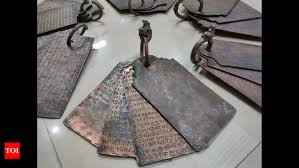
- 30 Dec 2024
In News:
- The Archaeological Survey of India (ASI) uncovered ancient copper plates and gold coins at the Srisailam Temple in Andhra Pradesh, specifically in the Ghantamandapam area.
- The discovery includes 20 sets of copper plates, totaling 72 leaves, and various gold coins.
- The ASI's Epigraphy Branch in Mysore has completed the documentation of these findings, and the materials are being studied in detail.
Collaboration with Srisailam Devasthanam:
- In collaboration with the Srisailam Devasthanam, ASI plans to publish a book that will detail the findings and their historical significance.
- The book will be printed soon by Pragati Publications in Hyderabad.
Srisailam Temple Overview:
- The Srisailam Temple, also known as the Mallikarjuna Swamy Temple, is a prominent Hindu pilgrimage site in Andhra Pradesh.
- It is located in the Nallamala Hills, overlooking the Krishna River.
- The temple is dedicated to Lord Shiva in the form of Mallikarjuna Swamy and Goddess Parvati as Bhramaramba Devi.
- It is one of the 12 Jyotirlingas of Lord Shiva and one of the Shakti Peethas, making it significant in both Shaivism and Shaktism.
Architectural Significance:
- The temple is built in the Dravidian style, featuring lofty towers and expansive courtyards, and is considered a prime example of Vijayanagara architecture.
- Historical references to the temple date back to the Satavahana period (2nd century AD), and the temple was further endowed by the Kakatiyas and Vijayanagara rulers.
Cultural and Religious Importance:
- The Srisailam Temple is unique for housing both a Jyotirlinga (Lord Shiva) and a Shakti Peetha (Goddess Bhramaramba), a rare combination not found at other temples.
- The great religious figure Adi Shankaracharya is believed to have visited the temple and composed the Sivananda Lahiri there.
Historical Context:
- The copper plates and inscriptions discovered are likely to provide valuable insights into the historical and cultural significance of the temple, as well as the region's ancient religious practices.
Reassessment of Conjugal Visits in Delhi Prisons
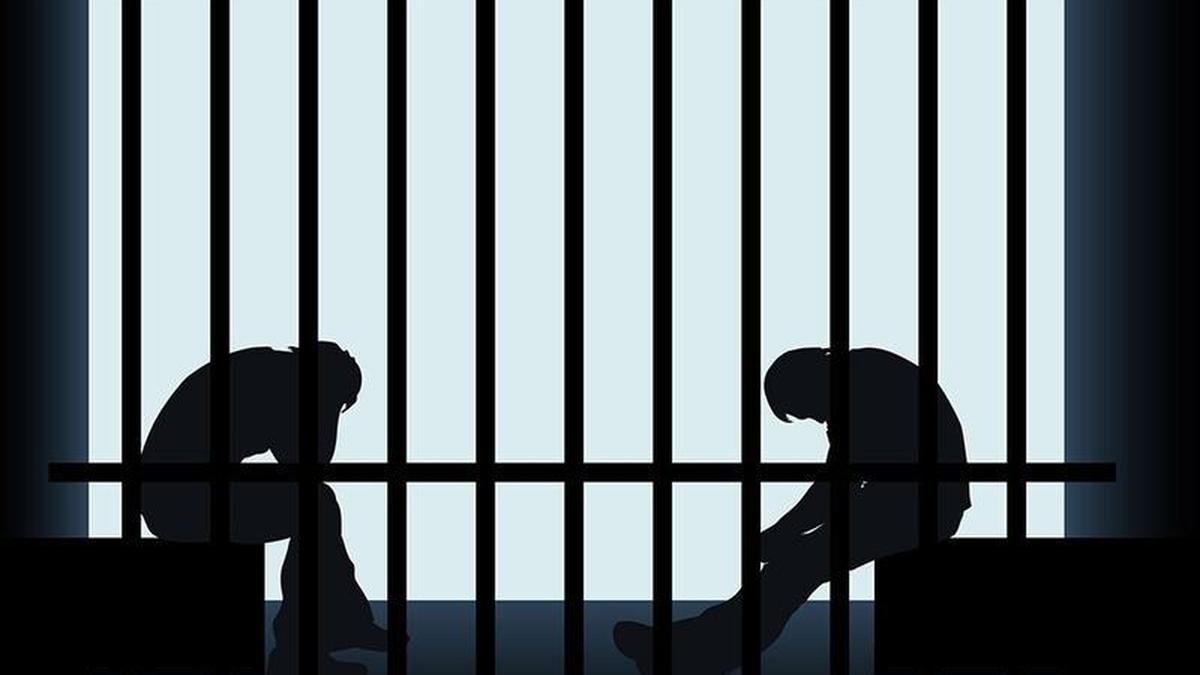
- 30 Dec 2024
In News:
- The Delhi government is reassessing the proposal to permit conjugal visits for prisoners, following the suspension of a similar initiative in Punjab.
- Delhi Chief Minister has sought further input from the Law Department and explored if similar schemes are implemented in other states.
Conjugal Visits - Definition & Context:
- Conjugal visits involve allowing prisoners to spend private time with their legal partners or spouses, including intimate relations, within prison premises.
- No national policy exists in India for conjugal rights of prisoners, leading to varied implementations across states.
Punjab’s Pilot Project - ‘Parivar Mulakat’:
- Ludhiana Central Jail introduced the 'Parivar Mulakat' programme in September 2022, allowing face-to-face meetings with family in designated rooms.
- The initiative was suspended shortly after its launch due to security concerns, particularly difficulty in conducting thorough body checks on visitors.
Challenges in Delhi:
- Overcrowded prisons in Delhi make it challenging to manage the logistical demands of conjugal visits, especially with up to 1,200 daily visitations.
- The Home Department has received proposals but no progress has been made over the past year.
Legal Precedents on Conjugal Rights:
- Punjab and Haryana High Court (2014) ruled that prisoners have a right to conjugal visits to facilitate procreation.
- Madras High Court (2018) allowed a life convict on parole for conjugal relations, and in 2023, a judge called for similar considerations for Tamil Nadu.
Human Rights Argument:
- Advocates argue that denying conjugal visits to prisoners violates basic human rights of both prisoners and their spouses, particularly those aged 21-50, who are often in sexually active years.
- Amit Sahni, a social activist, filed a PIL highlighting that most prisoners in Delhi are denied conjugal rights despite their eligibility.
Government’s Position:
- Delhi DG (Prisons) had argued that temporary leave such as parole and furlough serve the purpose of family ties, questioning the need for conjugal visits within prison.
Need for Legal Framework:
- Legal experts suggest the creation of a law and policy framework to regulate conjugal visits, ensuring clear guidelines for their implementation.
- S.D. Singh, a Supreme Court advocate, emphasized that conjugal visits should be legally recognized as a right, requiring formal legislation for consistent implementation.
Future Considerations:
- The Delhi government’s reassessment may lead to a policy that considers both human rights and security concerns in its decision on conjugal visits.
Re-emergence of the Dodo in Kashmir’s Papier Mâché Craft
- 30 Dec 2024
In News:
Artisans in Srinagar, Kashmir, have revived the extinct dodo bird in papier mâché forms. These figurines are exported worldwide, particularly to Mauritius and Europe, ahead of the Christmas season. Over 50,000 dodo figurines have already been sent to international markets in 2024.
Key Highlights:
The Dodo:
- Scientific Name: Raphus cucullatus.
- Extinct Since: 1681, approximately 80 years after humans began interacting with them.
- Endemic to Mauritius: A flightless bird from the Indian Ocean island of Mauritius, a national symbol of the country.
- Extinction Causes: Overhunting and the introduction of invasive species like rats, pigs, and cats that preyed on their eggs.
- Physical Traits: Grey or brown plumage, about 3 feet tall, flightless and fearless.
Papier Mâché Craft in Kashmir:
- History: Practiced for over 600 years in Kashmir, introduced during the reign of King Zain-ul-Abidin (15th century).
- Techniques: Involves creating decorative objects using paper pulp, with traditional Persian motifs.
- Recent Addition of Dodo: The dodo was introduced to the papier mâché craft around two decades ago, likely by Mauritian tourists.
International Market and Demand:
- Mauritius: A significant market for the papier mâché dodo, as the bird is a national emblem of Mauritius.
- Europe: Exported to European countries during the Christmas season, contributing to the popularity of Kashmir’s handicrafts.
- Kashmir's Karkhanas: Local craft workshops in Srinagar are producing thousands of dodo figurines each season, with over 3,000 dodos produced this year.
Cultural and Economic Impact:
- Artisans' Contribution: Local artisans are helping keep the memory of the extinct dodo alive, while boosting Kashmir’s handicraft industry.
- Global Recognition: The dodo is now a sought-after item in global markets, linked to the traditional art of Kashmir.
- Kashmir Handicrafts: Several crafts from Kashmir, including papier mâché, have received Geographical Indication (GI) tags for their distinct cultural and regional significance.
Sambar Deer

- 29 Dec 2024
In News:
Three poachers were arrested for killing a sambar deer in the Daying Ering Memorial Wildlife Sanctuary (DEMWS), East Siang district, Arunachal Pradesh.
Action Taken:
- Poachers Arrested: The poachers were booked under the Wildlife Protection Act 1972 and Arms Act 1959. The seized articles were handed over to the police, and a FIR was registered.
- Sanctuary Protection Efforts: The Divisional Forest Officer (DFO) emphasized the need for intensified surveillance to prevent further hunting incidents. Public cooperation was urged to report such incidents for prompt action.
About Sambar Deer:
- Scientific Name: Rusa unicolor.
- Native Regions: Found across the Indian subcontinent and Southeast Asia.
- Other Names: Known as Jarao in Nepal and Four-eyed deer in China.
- IUCN Red List: Listed as Vulnerable.
Key Features:
- Size: Stands between 1.2–1.4 meters at the shoulder.
- Weight: Can reach up to 550 kg, making it the largest oriental deer.
- Coat: Dark brown with a ruff around the neck, and unspotted.
- Antlers: Male sambar bears long, rugged antlers with three points (tines).
- Behavior: Elusive, most active at dusk and night.
Habitat:
- Water Dependency: Always found near water sources.
- Habitat Range: Dry deciduous forests, rainforests, and mixed forests.
- Social Structure: Often found alone or in small groups.
About Daying Ering Memorial Wildlife Sanctuary (DEMWS):
- Location: Situated in East Siang district, Arunachal Pradesh.
- Established: Originally established as Lali Wildlife Sanctuary in 1976, renamed Daying Ering Memorial in 1986.
- Climate: Tropical, receiving both north-east and south-west monsoons.
- Waterways: Home to the Siang River, one of Arunachal's major rivers.
Flora:
- Vegetation: Composed mainly of riverine plains with a variety of thatch and grasses.
- Trees: Includes scattered patches of trees such as Termenelia myriocarpa, Dillenia indica, Albizia spp., and Bombax ceiba.
Fauna:
- Mammals: Includes Hog Deer, Wild Pig, Tiger, and Elephant.
- Birds: Over 150 species of birds, including endangered species like the White-Winged Wood Duck and Bengal Florican.
IIT Bombay Develops Painless Needle-Free Shock Syringes
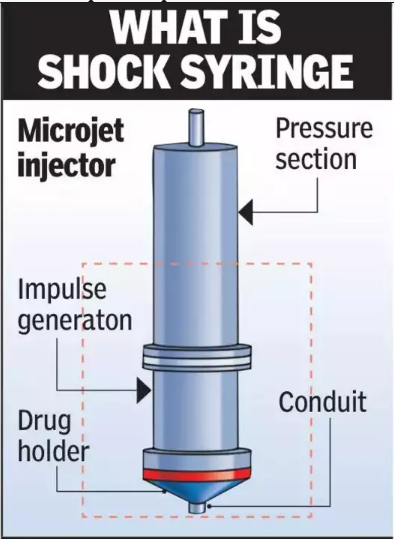
- 29 Dec 2024
In News:
Researchers at IIT Bombay, led by Viren Menezes from the Department of Aerospace Engineering, have developed a shockwave-based, needle-free syringe to deliver drugs painlessly and safely. The research was published in the Journal of Biomedical Materials and Devices.
Key Features of Shock Syringe:
- Unlike traditional syringes, the shock syringe uses high-energy shockwaves (traveling faster than the speed of sound) to deliver drugs, without the need for needles.
- The device is designed to reduce pain, tissue damage, and infection risk.
- The shock syringe aims to eliminate the discomfort and fear associated with needles.
How the Shock Syringe Works:
- The shock syringe is slightly longer than a ballpoint pen and contains a micro shock tube with three sections: driver, driven, and drug holder.
- Pressurized nitrogen gas is applied to the driver section, which creates a microjet of liquid drug. The microjet travels at speeds nearly twice as fast as a commercial airplane.
- The drug is then delivered through the nozzle of the syringe, penetrating the skin rapidly and gently.
Design Considerations:
- The syringe's nozzle has an opening of 125 μm (approximately the width of a human hair), ensuring a balance between precision and speed.
- Continuous monitoring of pressure ensures safe and effective drug delivery with minimal skin damage.
Testing and Results:
- Lab tests were conducted on rats, injecting three types of drugs:
- Anaesthetics (Ketamine-Xylazine): Shock syringe produced similar results to needles in terms of effect onset and duration.
- Viscous drugs (e.g., Terbinafine): The shock syringe outperformed needles, delivering the drug more deeply into the skin layers.
- Insulin for diabetic rats: The shock syringe lowered blood sugar levels more effectively and sustained the effect for a longer period.
- The skin analysis revealed less damage and inflammation with the shock syringe compared to traditional needles.
Advantages:
- Painless drug delivery: Patients experience little to no discomfort.
- Reduced tissue damage: The shock syringe causes less skin trauma and inflammation.
- Faster healing: Wounds from the injection heal quicker compared to traditional needles.
- Better drug absorption: Especially for viscous drugs, the shock syringe delivers more efficient and deeper drug penetration.
Potential Applications:
- The shock syringe could revolutionize immunization drives, making vaccinations faster and more efficient.
- It could significantly reduce the risk of bloodborne diseases caused by needle-stick injuries.
- The device is designed to perform over 1,000 injections, ensuring cost-effectiveness and reliability with minimal nozzle replacements.
Future Prospects:
- While promising, the future of shock syringes in clinical use depends on:
- Further innovation for human use.
- Obtaining regulatory approval.
- Ensuring the device’s affordability and accessibility.
PM- Ayushman Bharat Health Infrastructure Mission (PM-ABHIM) Scheme
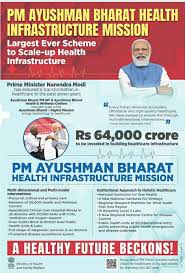
- 29 Dec 2024
In News:
- The Delhi High Court has ordered the signing of a Memorandum of Understanding (MoU) between the Union Ministry of Health and Family Welfare and the Delhi Government.
- This MoU will facilitate the implementation of the PM-Ayushman Bharat Health Infrastructure Mission (PM-ABHIM) in Delhi.
About PM-Ayushman Bharat Health Infrastructure Mission (PM-ABHIM):
- Scheme Type: Centrally Sponsored Scheme (CSS) with some Central Sector Components (CS).
- Total Outlay: Rs. 64,180 Crores for the period 2021-22 to 2025-26.
- Objective:
- To strengthen healthcare infrastructure across India, focusing on:
- Building capacities in health systems at primary, secondary, and tertiary levels.
- Preparing health systems to effectively respond to current and future pandemics/disasters.
- Key Focus Areas:
- Filling critical gaps in health infrastructure, surveillance, and health research in both urban and rural areas.
- Improving healthcare delivery across the entire continuum of care.
- Central Sector Components (CS) under the Scheme:
- 12 Central Institutions: To act as training and mentoring sites with 150-bedded Critical Care Hospital Blocks (CCBs).
- Strengthening NCDC: Boosting the National Centre for Disease Control (NCDC) and establishing 5 new regional NCDCs.
- Health Surveillance: Creation of 20 metropolitan health surveillance units and expansion of Integrated Health Information Portal across all States/UTs.
- Public Health Units: Operationalization of 17 new Public Health Units and strengthening 33 existing units at Points of Entry (Airports, Seaports, Land Crossings).
- Emergency Health Infrastructure: Establishment of 15 Health Emergency Operation Centres and 2 mobile hospitals.
- Research and Virology Institutes: Setting up a national institution for One Health, 4 new National Institutes for Virology, and 9 Biosafety Level III laboratories.
- Support for States/UTs under CSS Component:
- Health and Wellness Centres (HWCs):
- 17,788 rural HWCs: To be built in areas with populations of 5000 (plain) or 3000 (difficult terrain like hills, tribals, desert).
- 11,024 urban HWCs: Focus on slum and vulnerable areas with a population of 15,000-20,000.
- Block Public Health Units (BPHUs): Establishment of 3,382 BPHUs at the block level to strengthen healthcare accessibility.
- Integrated Public Health Labs (IPHLs): Setting up 730 IPHLs across districts for better health monitoring.
- Critical Care Hospital Blocks (CCBs): Establishment of 602 CCBs in districts with populations exceeding 5 lakh and referral linkages in other districts.
- Overall Goal: PM-ABHIM aims to significantly enhance healthcare infrastructure in India, making healthcare more accessible and effective, especially in rural and underdeveloped areas.
UN Approves New AU Force to Combat Al-Shabaab in Somalia
- 29 Dec 2024
In News:
- On January 19, 2024, the UN Security Council approved a new African Union (AU) force in Somalia to counter the Al-Shabaab terrorist group.
- The resolution was supported by 14 of 15 members, with the US abstaining due to concerns about funding.
- The new force will replace the African Union Transition Mission in Somalia (ATMIS) after its mandate ends on December 31, 2024.
New Mission - AUSSOM:
- The new mission is named African Union Support and Stabilization Mission in Somalia (AUSSOM).
- AUSSOM will continue supporting Somali forces in stabilizing the nation and combating terrorism.
- The mission's objective is to enhance security and stability in Somalia, addressing the challenges posed by Al-Shabaab and ISIL.
Mandate and Operations:
- AUSSOM allows for the deployment of up to 12,626 personnel, including 1,040 police officers, until June 2025.
- The force will focus on counterterrorism, maintaining security, and assisting the Somali government in stabilizing the country.
Financing:
- A hybrid funding approach will be used:
- 75% of the mission’s costs will be covered by the UN, and 25% will come from African Union and partner countries.
- The US raised concerns about the UN's disproportionate funding of the mission, which led to its abstention from voting.
Contributing Countries:
- Egypt has announced its participation in the new force.
- Burundi and Ethiopia will not be contributing troops to AUSSOM.
- Ethiopia has its own ongoing disputes with Somalia, particularly regarding its maritime deal with the breakaway Somaliland region.
Background on Somalia's Challenges:
- Somalia has faced decades of civil war, an insurgency by Al-Shabaab, and recurring climate disasters.
- The country is one of the poorest in the world, and its internal conflicts are exacerbated by clannism, which has fragmented its political and social structure.
Historical Context of Peace Missions in Somalia:
- Previous UN peacekeeping missions in Somalia (1992-1995) faced significant failures, notably the Battle of Mogadishu and the failure to prevent the 1993 massacre.
- The rise of Al-Shabaab in the mid-2000s has further escalated the conflict, and the mission of AUSSOM aims to address these continuing threats.
The Role of Clannism:
- Clannism has hindered the establishment of a unified government in Somalia, with clan rivalries leading to a lack of national cohesion.
- Clannism refers to the prevalence of clan-centric politics, where allegiance to clan and sub-clan interests often takes precedence over national cohesion. In Somalia, the major clans are Darod, Hawiye, Dir, and Rahanweyn.
Importance of AUSSOM:
- AUSSOM represents a strategic shift in the international approach to stabilizing Somalia, relying more on African-led initiatives for peace and security in the region.
Global Peacekeeping Operations:
- The UN peacekeeping mission has been active globally, with over 1 million personnel deployed across 70+ operations.
- Success stories like Sierra Leone (1999-2005) and Liberia (2003-2018) demonstrate the potential impact of well-executed peace missions, but past failures like in Somalia (1992-1995) and Rwanda (1994) underline the challenges faced.
India’s Contribution:
- India has contributed significantly to UN peacekeeping missions, deploying over 253,000 personnel in 49 operations since 1948.
- India’s contributions to missions in Somalia, Rwanda, Sierra Leone, and Sudan reflect its active role in global peacekeeping efforts.
ASI Decodes Sanskrit Inscription Found in Pakistan-Occupied Kashmir (PoK)
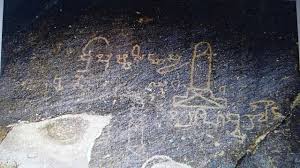
- 29 Dec 2024
In News:
An ancient Sanskrit inscription found in Gilgit (PoK) was decoded by the Archaeological Survey of India (ASI).
About the Inscription:
- Location:
- Gilgit (PoK): Written in Brahmi script, dating back to 4th century CE.
- Peshawar (Pakistan): Written in Sharada script, dating to 10th century CE.
- Details of Gilgit Inscription:
- Mentions Pushpasingha, who installed a Mahesvaralinga for the merit of his guru.
- Written in Brahmi script, which was prevalent during the 4th century CE.
- Religious Context: Indicates significant religious connection, particularly with Shaivism.
- Details of Peshawar Inscription:
- Fragmentary: Engraved on a slab.
- Written in Sharada characters (10th century CE).
- Mentions Buddhist Dharini (chants), particularly referring to Da (Dha) rini in line six.
- The inscription is partially damaged, and further details are unclear.
- Earlier Discoveries:
- This is not the first Sanskrit inscription decoded from Pakistan. In the past, Sanskrit inscriptions have been found in various parts of Pakistan.
- Swat Valley: Known for numerous Buddhist rock inscriptions in Sanskrit using Nagari script, which were part of the Gupta Empire (circa 240–550 CE).
- Religious and Cultural Implications:
- The Gilgit inscription provides evidence of Shaivism as a prominent religious practice in the region during the 4th century CE.
- The Peshawar inscription suggests Buddhist influences, particularly related to Buddhist chants and rituals.
- Swat Valley's Role: The inscriptions found here highlight its importance as a center of Buddhist learning and cultural exchange.
China approves construction of World’s Largest Hydropower Dam on the Brahmaputra River

- 28 Dec 2024
In News:
China approved the construction of the world's largest dam, stated to be the planet's biggest infra project, on the Brahmaputra river in Tibet close to the Indian border, raising concerns in India and Bangladesh.
Key highlights:
Overview of the Project:
- Location: Lower reaches of the Yarlung Zangbo River (Tibetan name for Brahmaputra), where the river makes a U-turn in the Himalayan region before flowing into Arunachal Pradesh, India.
- Purpose:
- To support China’s carbon neutrality goals.
- To boost industrial growth and create jobs in Tibet.
- Expected to generate 300 billion kWh of electricity annually, over three times the capacity of the Three Gorges Dam in central China.
Significance:
- Scale: The dam is poised to be the world’s largest hydropower project, surpassing the Three Gorges Dam, and becoming the biggest infrastructure project globally, with an estimated cost of USD 137 billion.
- Engineering Challenges: The site is located in a seismic zone on the Tibetan plateau, prone to earthquakes, making construction and operational stability a major engineering challenge.
Concerns:
- Environmental Impact:
- Potential disruption to the local ecosystem and biodiversity.
- Risk of altering the river’s flow and course, which could impact agriculture and water resources downstream, particularly in India and Bangladesh.
- Geopolitical Risks:
- Water control: India and Bangladesh are concerned about China’s ability to control the water flow, with fears of China manipulating the flow to release excess water during conflicts, causing potential flooding in border areas.
- The project could also disrupt the hydrological cycle, affecting the region’s water availability, especially in Assam and Bangladesh.
Background:
- The Brahmaputra River is a trans-boundary river, flowing through China, India, and Bangladesh. Known by different names in these countries, it plays a vital role in the livelihoods of millions of people.
- China has already initiated hydropower generation on the upper reaches of the Yarlung Zangbo, with plans for additional projects upstream.
India-China Cooperation:
- China and India have an Expert Level Mechanism (ELM) in place since 2006 to manage trans-boundary river issues, under which China shares hydrological data with India, especially during the flood season.
- India is also constructing its own hydropower projects on the Brahmaputra in Arunachal Pradesh.
Potential Outcomes:
- Energy Generation: The dam could significantly contribute to China’s energy needs, providing a substantial amount of renewable energy.
- Regional Tensions: The dam’s construction may escalate tensions between China, India, and Bangladesh due to the control over water resources and environmental impact concerns.
Parker Solar Probe’s Closest-Ever Approach to the Sun

- 28 Dec 2024
In News:
NASA scientists announced that the Parker Solar Probe survived the closest-ever approach to the Sun. The craft was operating normally after it passed just 6.1 million km from the solar surface.
About the Parker Solar Probe:
- Launched: August 12, 2018, as part of NASA’s Living With a Star program.
- Named After: Eugene Newman Parker, a solar astrophysicist, marking the first NASA mission named after a living researcher.
- Mission Objectives:
- To study the Sun’s corona and the solar wind, investigating why the corona is hotter than the Sun’s surface.
- To explore the origins of solar winds and high-energy particles that impact space weather.
- To understand the structure and dynamics of plasma and magnetic fields around the Sun.
- To examine the mechanisms behind the acceleration and transportation of energetic particles.
Technological Feats:
- Heat Shield: Equipped with a 4.5-inch carbon-composite shield that withstands temperatures up to 1,377°C (2,500°F) while keeping the instruments cool at about 29.4°C (85°F).
- Speed: Travels at a speed of 692,000 km/h (430,000 mph), making it the fastest human-made object.
- Venus Flybys: Uses gravitational assists from Venus to gradually reduce its orbit and get closer to the Sun.
Historic Milestone:
- Closest Approach: On December 24, 2024, Parker Solar Probe reached a historic distance of 6.1 million km from the Sun's surface, the closest any human-made object has ever been.
- Comparison: If the Earth and Sun were 1 meter apart, Parker Solar Probe would be just 4 cm from the Sun.
- Temperature: At its closest, it endured temperatures up to 1,377°C.
Significance of the Mission:
- Scientific Contributions:
- Solar Wind: Helps scientists understand the origins of solar winds, which affect space weather and Earth’s technological systems.
- Corona Heating: Investigates why the Sun's corona is much hotter than its surface (a long-standing astrophysical mystery).
- Space Weather: Provides critical data for predicting space weather events that can impact satellites, communication systems, and power grids on Earth.
- Practical Implications:
- Improves understanding of space weather, potentially aiding in the protection of Earth’s infrastructure from solar storms.
- Technological and Engineering Marvel:
- Demonstrates advanced spacecraft technology that can withstand extreme conditions close to the Sun.
Recent Developments:
- Data Collection: As the probe passed through the Sun’s outer atmosphere (the corona), it collected valuable data expected to answer fundamental questions about solar behavior.
- Communication: Despite the extreme proximity to the Sun, the probe sent back a signal on December 26, confirming its status.
Key Dates:
- Launch: August 12, 2018.
- Closest Approach: December 24, 2024.
- Data Expected: Detailed telemetry data on January 1, 2025.
Exercise SURYA KIRAN
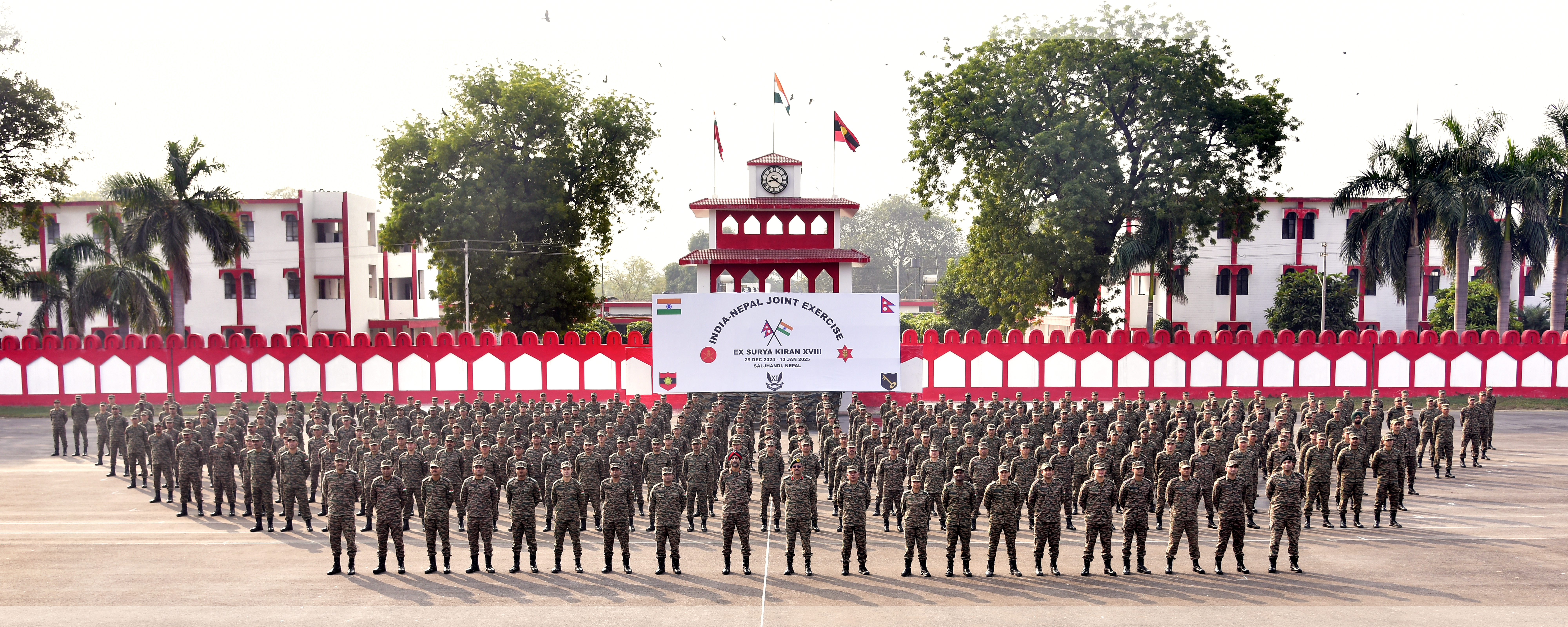
- 28 Dec 2024
In News:
Indian Army Contingent Departs for 18th Edition of Exercise SURYA KIRAN (India-Nepal Joint Military Exercise).
Key Highlights:
- Event Overview:
- Name: 18th Edition of Battalion-Level Joint Military Exercise SURYA KIRAN.
- Dates: 31st December 2024 to 13th January 2025.
- Location: Saljhandi, Nepal.
- Participants: Indian Army (334 personnel, led by a Battalion from the 11th Gorkha Rifles) and Nepal Army (Srijung Battalion).
- Objective of Exercise:
- Enhance interoperability in jungle warfare, counter-terrorism operations in mountainous terrain, and Humanitarian Assistance and Disaster Relief (HADR) under the UN Charter.
- Focus on operational preparedness, aviation training, medical aspects, and environmental conservation.
- Key Features:
- Training Focus: Improving combat skills and coordination to operate together in challenging situations.
- Exchange of Ideas: Soldiers from both nations will share best practices, enhance mutual understanding of operational procedures.
- Strengthening Bilateral Relations: Reinforces strong bonds of friendship, cultural linkages, and defense cooperation between India and Nepal.
- Significance:
- Historical Context: Exercise held alternately in India and Nepal since 2011.
- Enhances Combat Readiness: Prepares both armies to address shared security challenges and improve operational capabilities.
- Diplomatic Engagement: Fosters a productive professional environment between India and Nepal.
- Recent Developments:
- The exercise follows visits by General Upendra Dwivedi (Indian Army Chief) to Nepal and General Ashok Raj Sigdel (Nepali Army Chief) to India, strengthening military ties.
- Previous Editions:
- 17th Edition: Conducted in Pithoragarh, Uttarakhand (24th Nov - 7th Dec 2023).
Neolithic Age Grooves Discovery Near Boothapandi

- 28 Dec 2024
In News:
- Archaeological Survey of India (ASI) discovered rock grooves created during the Neolithic age near Boothapandi village, Kanniyakumari district.
- The discovery was made by K. Hari Gopalakrishnan (Archaeological Officer, Tirunelveli and Kanniyakumari districts) and M. Faisal (Sembavalam Research Centre).
Key Highlights:
- Groove Characteristics:
- The grooves are approximately 4,000 years old, formed by Neolithic people for tool sharpening.
- Tools used for activities like hunting, ploughing, and digging were sharpened here.
- The grooves resulted from wear and tear of tools that had broken or worn out during use.
- Groove Dimensions:
- Largest groove: 15 cm in length, 4 cm in width.
- Smallest groove: 8 cm in length, 3 cm in width.
- Similar Discoveries:
- Similar grooves have been found in other parts of Tamil Nadu, including Krishnagiri, Tiruvannamalai, and Villupuram.
- Significance:
- The grooves provide evidence of Neolithic human habitation in the region.
- Ongoing excavations are expected to uncover more about Neolithic culture in the area.The Hindu
Lighthouse Tourism in India

- 27 Dec 2024
In News:
Lighthouse tourism in India is rapidly emerging as an exciting and profitable segment of the country's travel and tourism industry. India's coastline, stretching over 7,500 kilometers, is home to 204 lighthouses, many of which are being transformed into vibrant tourist destinations, celebrating both India's rich maritime history and its natural beauty.
Key Highlights:
- Historical and Scenic Appeal: Lighthouses in India are often located in breathtaking coastal or island locations, offering panoramic sea views and access to surrounding natural beauty. Some of these structures are centuries old and are situated near significant cultural landmarks or UNESCO World Heritage Sites, adding cultural depth to the visitor experience.
- Economic Growth: As part of the broader Maritime India Vision (MIV) 2030 and Amrit Kaal Vision 2047, the Government of India is keen to transform these historic lighthouses into hubs of economic activity. By developing infrastructure, creating new tourism-related jobs, and fostering local entrepreneurship, lighthouse tourism aims to benefit coastal communities and boost India's tourism economy. As of 2023-24, 75 lighthouses across 10 states have been equipped with modern amenities, attracting 16 lakh visitors—a 400% increase from previous years.
- Government Initiatives:
- Lighthouse Festivals: The annual Indian Lighthouse Festival, inaugurated in 2023, serves as a key event to promote lighthouse tourism and cultural heritage.
- The 1st Indian Lighthouse Festival, “Bharatiya Prakash Stambh Utsav”, was inaugurated on 23rd September, 2023 by the Union Minister of Ports, Shipping & Waterways, Shri Sarbananda Sonowal and Goa Chief Minister, Shri Pramod Sawant at the historic Fort Aguada in Goa.
- The 2nd Indian Lighthouse Festival was held in Odisha. Union Minister of Ports, Shipping & Waterways, Shri Sarbananda Sonowal, was also joined by Odisha Chief Minister, Mohan Charan Majhi. Shri Sonowal dedicated two new lighthouses at Chaumuck (Balasore) and Dhamra (Bhadrak) and emphasized empowering coastal communities to preserve and promote lighthouses as part of India’s rich maritime heritage.
- Sagarmala Programme: This government initiative integrates infrastructure development with sustainable practices, ensuring that the growth of lighthouse tourism benefits local communities while preserving the environment.
- Tourism Infrastructure: The government has invested ?60 crore in enhancing these sites, providing facilities like museums, parks, amphitheaters, and more to enrich the visitor experience.
- Lighthouse Festivals: The annual Indian Lighthouse Festival, inaugurated in 2023, serves as a key event to promote lighthouse tourism and cultural heritage.
- Sustainable Development: The Indian government places a strong emphasis on eco-friendly tourism. This includes integrating lighthouses into broader coastal circuits and launching digital awareness campaigns to attract domestic and international tourists.
- Community Empowerment and Employment: Lighthouse tourism has already created direct and indirect employment, from hospitality to transportation, local handicrafts, and artisan work, with more than 500 jobs being generated. Local communities are being trained to offer skills in hospitality and tourism services.
Future Plans:
- Skill Development: Programs are being introduced to equip local people with the necessary skills to cater to the tourism industry.
- Sustainable Practices: Eco-friendly practices will continue to be emphasized to protect coastal ecosystems.
- Integration with Coastal Circuits: Lighthouses will become key points of interest in broader coastal tourism itineraries, further enhancing their appeal to tourists.
Household Consumption Expenditure Survey: 2023-24
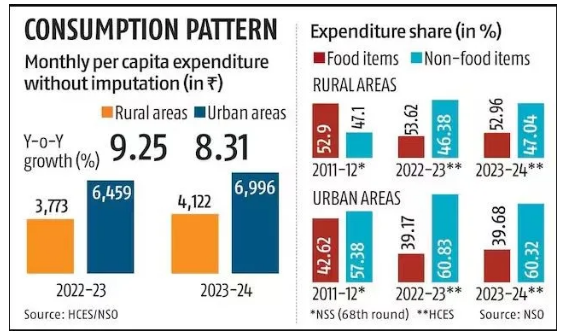
- 27 Dec 2024
In News:
The latest Household Consumption Expenditure Survey (HCES) for 2023-24 reveals notable trends in consumption patterns in rural and urban India, reflecting economic shifts post-pandemic.
Key Highlights:
- Food Spending Increase: The share of food expenditure in household budgets has increased both in rural and urban areas, likely due to rising food prices.
- Rural households allocated 47.04% of their expenditure to food in 2023-24, up from 46.38% in 2022-23.
- Urban households spent 39.68% of their budgets on food, slightly up from 39.17% last year.
- Narrowing Urban-Rural Gap: The gap in Monthly Per Capita Consumption Expenditure (MPCE) between rural and urban households has steadily reduced over the past decade.
- In 2023-24, rural consumption spending was 69.7% of urban consumption, an improvement from 71.2% in 2022-23 and 83.9% in 2011-12.
- Increased Rural Spending: Rural India has seen significant increases in spending. The average monthly spending per person in rural areas rose by 9.3% to Rs 4,122 in 2023-24, surpassing the 8.3% rise to Rs 6,996 in urban areas.
- This suggests a growing momentum in rural consumption, which has outpaced urban consumption growth in the last year.
- Spending Trends Across Income Groups: While the top 5% of both rural and urban populations saw a decrease in their consumption spending, every other income group, including the bottom 5%, registered an increase in spending.
- The bottom 20% in both rural and urban areas saw the highest growth in expenditure, signaling rising economic activity among lower-income groups.
- Non-Food Expenditure Dominates: Non-food items make up a larger share of household spending, particularly in urban areas, where they account for 60.32% of total expenditure compared to 52.96% in rural areas.
- In rural India, major non-food expenses include medical, conveyance, and clothing, while urban households allocate more to entertainment, education, and miscellaneous goods.
- Regional Consumption Patterns: Consumption expenditure varied significantly across states, with western and northern states like Maharashtra, Punjab, and Tamil Nadu spending more than the national average.
- In contrast, eastern and central states, including West Bengal, Bihar, and Odisha, spent less. Sikkim reported the highest per capita expenditure in both rural (Rs 9,377) and urban (Rs 13,927) areas, while Chhattisgarh recorded the lowest.
- Declining Consumption Inequality: The Gini coefficient, which measures consumption inequality, has declined in both rural and urban areas.
- This reflects reduced disparity in spending, indicating a trend toward more equitable economic growth across regions.
- Food Expenditure Trends: Food categories like beverages, processed foods, and cereals continued to see rising shares in total expenditure. The rise in spending on food items was particularly notable in rural areas for eggs, fish, and meat.
Operation Green Scheme
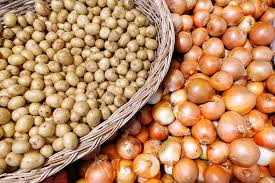
- 27 Dec 2024
In News:
The government’s flagship Operation Greens scheme, designed to stabilise crop prices and benefit farmers, has spent just 34 per cent of its allocated budget for 2024-25, according to a parliamentary report, even as onion farmers in Maharashtra reel from massive losses and potato shortages grip eastern states.
Key Highlights:
Overview:
- Launched: November 2018 under the Pradhan Mantri Kisan SAMPADA Yojana.
- Objective: Stabilize prices and improve farmers' income by enhancing the production and marketing of perishable crops, initially focusing on Tomato, Onion, and Potato (TOP).
- Expanded Scope (2021): Includes 22 perishable crops like mango, banana, ginger, apple, and shrimp.
- Implemented by: Ministry of Food Processing Industries (MoFPI).
- Funding: Managed by the National Agricultural Cooperative Marketing Federation of India (NAFED).
Key Aims:
- Reduce price volatility in agricultural markets.
- Minimize post-harvest losses.
- Strengthen farm-to-market linkages.
- Enhance farmers’ earnings by stabilizing market prices.
- Promote value addition and food processing.
Scheme Components:
- Short-term Interventions:
- Subsidies on transportation (50%) and storage (50%) to protect farmers from distress sales.
- Price stabilization during periods of surplus or shortage.
- Long-term Interventions:
- Development of farm-gate infrastructure like cold storage and processing facilities.
- Strengthening production clusters and Farmer Producer Organizations (FPOs).
- Building efficient agri-logistics systems.
- Promoting food processing and value addition capacities.
Key Features:
- 50% subsidy on transportation and storage costs for eligible crops.
- Projects eligible for 50% subsidy (up to ?50 crore per project), and for FPOs, a 70% subsidy.
- Demand-driven funding based on applications, with no fixed crop or state-wise allocation.
Key Findings from Parliamentary Standing Committee (PSC) Report (2024):
- Underutilisation of Budget: Only 34% (?59.44 crore) of the allocated ?173.40 crore for 2024-25 spent by October 2024, leaving 65.73% unspent.
- Slow Implementation: Out of 10 targeted projects, only 3 were completed by October 2024.
- Limited Impact on Price Stabilization:
- Onion prices fell by nearly 50% in Maharashtra, despite the scheme's intent to stabilize prices.
- Potato shortages in states like Odisha and Jharkhand due to weather-induced production dips in West Bengal.
- Inconsistent Policies: Export bans and fluctuating export duties caused frustration among onion farmers, undermining the scheme’s effectiveness in ensuring fair prices.
Impact on Farmers:
- Price Stabilization: Despite the scheme’s aims, price fluctuations continue to affect farmers, especially in Maharashtra with the onion price crash.
- Post-Harvest Losses: The scheme aims to reduce wastage by building infrastructure like cold storage, but challenges remain in implementation.
- Market Linkages: Attempts to connect farmers and FPOs with retail markets have not yet yielded significant results.
Operational Challenges:
- The scheme faces challenges in fulfilling its dual mandate of ensuring fair prices for farmers while keeping consumer prices affordable.
- The slow utilization of funds and incomplete infrastructure projects raise concerns about the effectiveness of the program.
- Inconsistent policy decisions, like the export ban and imposition of export duties, have contributed to farmer discontent.
Dr. Pushpak Bhattacharyya Committee
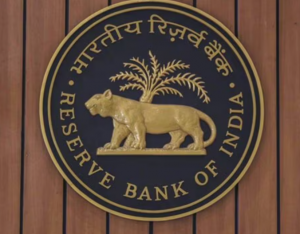
- 27 Dec 2024
In News:
- The Reserve Bank of India (RBI) has set up an eight-member committee to create a framework for the responsible and ethical use of Artificial Intelligence (AI) in the financial sector.
- The committee is chaired by Dr. Pushpak Bhattacharyya, Professor in the Department of Computer Science and Engineering at IIT Bombay.
Key Highlights:
Committee's Objective:
- The primary goal is to develop a Framework for Responsible and Ethical Enablement of AI (FREE-AI) in the financial sector.
- It will guide the ethical adoption of AI in financial services to enhance operational efficiency, decision-making, and risk management.
Scope of the Committee's Work:
- Assess the current global and domestic adoption of AI in financial services.
- Identify potential risks and challenges associated with the integration of AI in the sector.
- Recommend a framework for evaluating, mitigating, and monitoring AI-related risks.
- Propose compliance requirements for various financial entities (e.g., banks, NBFCs, fintech firms).
- Suggest a governance framework for ethical AI usage.
Key Benefits of AI in Financial Services:
- Operational Efficiency: AI can automate repetitive tasks, process large datasets, and enhance accuracy (e.g., loan application processing).
- Enhanced Decision-Making: Predictive analytics in AI help forecast market trends, aiding in better financial decision-making (e.g., algorithmic trading).
- Customer Relationship Management: AI-powered chatbots and virtual assistants enhance customer interaction, offering 24/7 support.
- Improved Risk Management: AI enables proactive fraud detection, improving security and preventing financial losses.
Concerns Associated with AI in Finance:
- Embedded Bias: AI models can replicate biases present in training data, leading to discriminatory outcomes and financial exclusion.
- Data Privacy and Security: The use of AI poses risks to personal data security, with potential violations of privacy regulations.
- Operational Challenges: AI systems may exhibit inconsistent responses, leading to challenges in trust and effectiveness.
- Cybersecurity Risks: Increased use of AI can heighten vulnerability to cyber-attacks and exploitation.
RBI's Role & Governance:
- The RBI aims to ensure that AI adoption in the financial sector is ethical, transparent, and aligned with global best practices.
- The committee's recommendations will influence policies to prevent misuse and safeguard consumer interests.
Rupee and Real Effective Exchange Rate (REER)

- 27 Dec 2024
In News:
The real effective exchange rate (REER) index of the rupee touched a record 108.14 in November, strengthening by 4.5 per cent during this calendar year, according to the latest Reserve Bank of India (RBI) data.
Key Highlights:
- Record REER Index:
- The Real Effective Exchange Rate (REER) of the rupee reached an all-time high of 108.14 in November 2024.
- This marks a 4.5% appreciation in REER during the calendar year 2024, according to RBI data.
- What is REER?
- REER is a weighted average of a country’s currency value against the currencies of its major trading partners, adjusted for inflation differentials.
- It considers 40 currencies accounting for about 88% of India's trade.
- REER Calculation:
- Nominal Exchange Rates: The exchange rate between the rupee and each partner's currency.
- Inflation Differentials: Adjusts for inflation differences between India and its trading partners.
- Trade Weights: Based on the trade share with each partner.
- Recent Trends in REER:
- In 2023, REER dropped from 105.32 in January to 99.03 in April.
- It has since been on an appreciating trend, reaching 107.20 in October and 108.14 in November 2024.
- Dollar Strengthening Impact:
- Despite the rupee weakening against the US dollar (from 83.67 to 85.19 between September and December 2024), it has appreciated against the euro, British pound, and Japanese yen.
- The dollar's strengthening was fueled by global economic factors, including inflation expectations in the US and high bond yields, which led to capital outflows from other countries, including India.
- Impact on Exports and Imports:
- Overvaluation: A REER above 100 signals overvaluation, which can harm export competitiveness (exports become costlier) while making imports cheaper.
- Undervaluation: A REER below 100 indicates a currency is undervalued, boosting exports but increasing the cost of imports.
- India's Inflation and REER:
- India's higher inflation relative to trading partners is a key factor behind the rupee’s rising REER, despite its depreciation against major currencies.
- This suggests the rupee is overvalued, which could explain why the RBI may allow the rupee to depreciate further against the dollar.
- Global Context:
- The strengthening of the US dollar, influenced by factors such as tariff policies under the Trump administration and tighter US monetary policies, plays a significant role in the depreciation of the rupee against the dollar.
- This dynamic affects India's trade balance, with potential consequences for export growth.
- Implications for India’s Economy:
- Overvalued currency (as indicated by REER above 100) can lead to a trade deficit, as imports become cheaper and exports less competitive.
- A weaker rupee, particularly against the dollar, could boost Indian exports but raise the cost of imports.
Strengthening Fisheries Extension Services

- 26 Dec 2024
In News:
India possesses diverse fisheries resources that provide livelihood opportunities to approximately three crore fishers and fish farmers. The country has witnessed an 83% increase in the national fish production since 2013-14, that stands at a record 175 lakh tons in 2022-23.
Importance of Fisheries Extension Services:
- Livelihood Support: Fisheries provide livelihoods to over 3 crore fishers and fish farmers in India. The sector's growth is crucial for enhancing sustainable practices and ensuring long-term productivity.
- Growth in Fish Production: India’s fish production has seen an 83% increase since 2013-14, reaching 175 lakh tons in 2022-23, with 75% of production coming from inland fisheries. India is the second-largest fish and aquaculture producer globally.
- Role of Extension Services: Extension services bridge the gap between scientific advancements and fishers, offering guidance on:
- Species lifecycle management
- Water quality management
- Disease control
- Sustainable rearing technologies and business models.
Government Initiatives to Strengthen Fisheries Extension:
- Matsya Seva Kendras (MSKs):
- Launched under PMMSY (Pradhan Mantri Matsya Sampada Yojana) in 2020, MSKs are one-stop centers providing comprehensive extension services.
- Support to Fish Farmers: MSKs offer:
- Disease testing, water, and soil analysis.
- Training on sustainable aquaculture practices.
- Technology infusion in seed/feed management.
- Focus on Inclusivity: Government assistance (up to 60%) is available for women and marginalized communities to set up MSKs.
- Examples:
- Thrissur, Kerala: Equipped with labs for water and microbial analysis.
- Maharashtra (Nasik and Sangli): Capacity-building efforts on seed/feed inputs.
- Collaborations: MSKs mobilize start-ups, cooperatives, and Fish Farmer Producer Organizations (FFPOs) to share best practices, including regenerative and conservation management in the face of climate change.
- Sagar Mitras:
- Role: Deployed in coastal states and union territories, Sagar Mitras act as a vital interface between the government and marine fishers.
- Functions:
- Collection and dissemination of daily marine catch data, price fluctuations, and market insights.
- Dissemination of important information: weather forecasts, fishing zones, local regulations, and hygienic fish handling.
- Provide support on disaster preparedness and natural calamities.
Enhancing Extension Services through Digital Platforms:
- AquaBazaar: A virtual learning platform initiated by the National Fisheries Development Board to provide expert guidance on:
- Seed production and breeding of commercially important fish species.
- Practical demonstrations to improve fishers' knowledge.
- Digital Outreach: Expanding such platforms will improve access to resources for fishers, especially in rural and remote areas.
Institutional Convergence and Capacity Building:
- Krishi Vigyan Kendras (KVKs): Fisheries extension services should be integrated with the over 700 Krishi Vigyan Kendras and state-level agricultural extension services for effective outreach.
- Formalizing the Sector: The World Bank-assisted project aims to create work-based digital identities for fishers and fish farmers, enhancing their access to extension services, training, and awareness programs.
Challenges in Fisheries Extension Services:
- Fragmented Initiatives: Multiple government schemes and programs lack institutional convergence, leading to inefficiencies in reaching the grassroots level.
- Digital Divide: Many rural and coastal areas face challenges in terms of digital literacy and internet connectivity, limiting the effectiveness of online platforms.
- Impact of Climate Change: Unpredictable weather patterns and resource depletion due to overfishing demand adaptive strategies and the promotion of climate-resilient practices.
Conclusion and Way Forward:
- Institutional Convergence: Combining existing extension machinery like Krishi Vigyan Kendras with fisheries extension services to leverage established networks and knowledge.
- Expand Digital Outreach: Platforms like AquaBazaar should be expanded to ensure wider access to expert knowledge, training, and best practices.
- Private Sector Collaboration: Encouraging public-private partnerships can enhance technology dissemination, capacity building, and resource mobilization in the fisheries sector.
- Focus on Sustainability: Developing climate-resilient and sustainable fisheries practices will be essential to address challenges posed by environmental changes and overfishing.
Private Aviation and Emissions
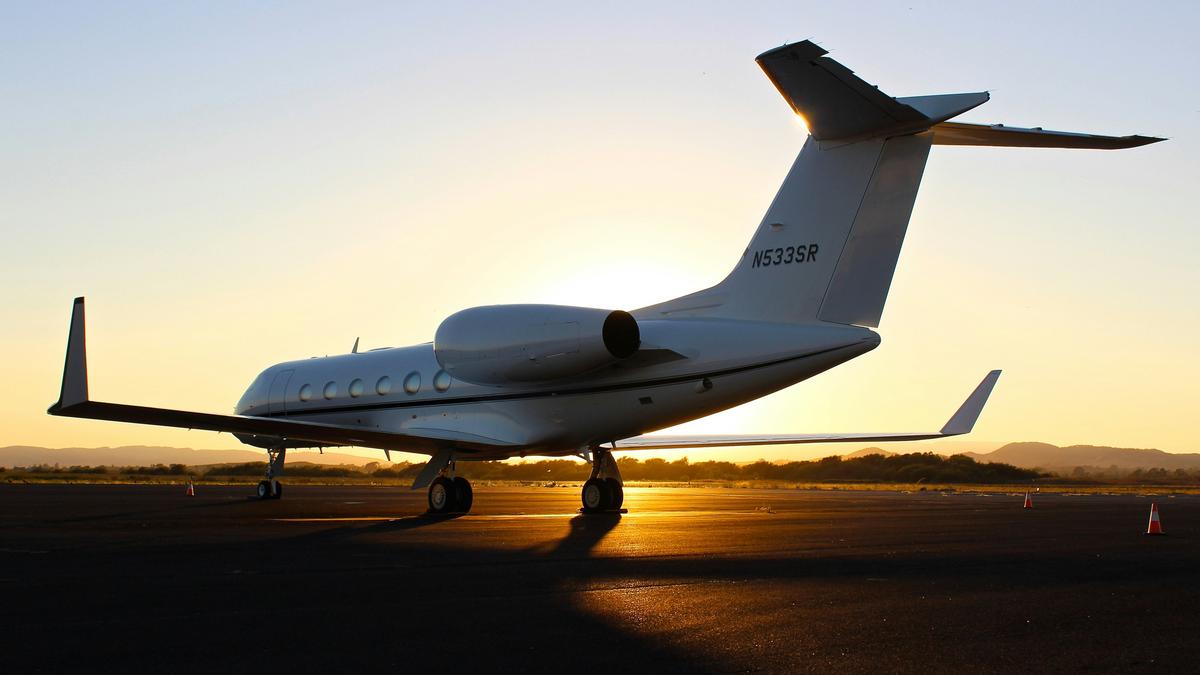
- 26 Dec 2024
In News:
Private aviation is releasing more than its ‘fair share’ of emissions.
Key Highlights:
- Aviation Sector's Global Emissions:
- The aviation sector contributed 2% of global CO2 emissions in 2022, around 800 Mt CO2 (International Energy Agency).
- If considered as a nation, aviation would rank among the top 10 emitters worldwide.
- Emissions from aviation have grown faster than other sectors like rail, road, or shipping in recent decades.
- Private Aviation and Its Impact:
- Private jets emit 5 to 14 times more CO2 per passenger than commercial flights and 50 times more than trains.
- Emissions from private aviation increased by 46% between 2019 and 2023.
- Each private flight contributes 3.6 tonnes of CO2 on average, intensifying global warming.
- Private aviation is responsible for significant nitrogen oxide (NOx) emissions and the creation of vapor trails, which further amplify environmental damage.
Trends in Private Aviation Growth:
- Global Trends:
- The number of private jets increased from 25,993 in December 2023 to 26,454 in February 2024.
- In the U.S., 69% of private aviation activity is concentrated.
- 8,500 more jets are expected to be delivered in the next 10 years globally.
- Private Aviation in India:
- 112 private planes were registered in India as of March 2024, placing it among the top 20 countries for private aircraft ownership.
- India's private aviation sector is expanding, driven by the growing billionaire and millionaire population.
- Private aircraft ownership in India stands at 1 per 1 lakh population, which is low compared to countries like Malta (46.51 per lakh) and the U.S. (5.45 per lakh).
Emission Reduction Efforts and Solutions:
- Sustainable Aviation Fuels (SAFs):
- SAFs are bio-based or waste-derived fuels that can reduce carbon emissions by up to 80% compared to conventional jet fuels.
- Airlines like SpiceJet (2018) and AirAsia (2023) have tested SAFs, but large-scale adoption is hindered by high costs and limited production.
- India aims to leverage its ethanol production chain, with potential to meet 15-20% of aviation fuel demand by 2050 if only surplus sugar is used.
- Hydrogen and Electric Aviation:
- Hydrogen offers a higher energy density than kerosene and emits only water vapor, making it a clean fuel alternative. However, hydrogen faces challenges with storage, infrastructure, and aircraft redesign.
- Battery-electric propulsion offers zero emissions but is currently limited by battery weight, energy density, and charging infrastructure.
India’s Policy and Initiatives:
- Government Initiatives:
- UDAN Scheme (Ude Desh ka Aam Nagrik) aims to enhance rural connectivity.
- NABH (Nextgen Airports for Bharat Nirman) seeks to increase airport capacity by five times.
- Sustainability Efforts:
- Indian airlines have tested SAFs, such as a 25% jatropha oil blend by SpiceJet in 2018.
- Ethanol for aviation fuel: India plans to use surplus sugar for ethanol, potentially fulfilling 15-20% of aviation fuel needs by 2050.
- Challenges to Decarbonisation:
- SAFs are costly and limited in availability.
- Hydrogen requires extensive infrastructure and aircraft redesign.
- Battery-electric solutions are currently unsuitable for long-haul flights due to energy limitations.
Ocean Anoxic Event 1a (OAE 1a)

- 26 Dec 2024
In News:
A recent study published in Science Advances has offered fresh insights into the timing and duration of the Ocean Anoxic Event 1a (OAE 1a).
What is OAE 1a?
- Definition: A period during the Cretaceous Period (~119.5 million years ago) when Earth's oceans became oxygen-depleted (anoxic), causing significant disruption in marine ecosystems.
- Cause: Triggered by massive volcanic eruptions that released large amounts of CO?, leading to global warming and depletion of oxygen in oceans. This caused the formation of anoxic marine basins.
- Impact: The depletion of oxygen led to the extinction of marine species, especially plankton, and the formation of black shales (organic carbon-rich layers).
Anoxic Marine Basins:
- Characteristics: These are bodies of water with extremely low or absent oxygen, allowing certain microbes and fungi to thrive, while most aerobic organisms perish.
- Significance: Anoxic basins contribute to carbon sequestration by slowing down the decay of organic material, helping in the reduction of atmospheric CO? levels. Examples include the Black Sea, Cariaco Basin, and Orca Basin.
Recent Study Findings (Published in Science Advances):
- Timing: OAE 1a began approximately 119.5 million years ago and lasted for about 1.1 million years, with a long recovery period for ocean ecosystems.
- Methodology: The study used isotopic analysis of volcanic tuffs from Japan's Hokkaido Island to pinpoint the timing of the event.
- Volcanic Eruptions: The study confirmed that volcanic eruptions, particularly from the Ontong Java Nui complex, released CO?, triggering oceanic oxygen depletion.
- Relevance to Modern Climate Change: The study draws parallels between past volcanic CO? emissions and current human-induced warming, warning that rapid modern warming could cause similar disruptions in marine ecosystems and potentially lead to a Holocene extinction.
Holocene Extinction:
- Definition: The ongoing Sixth Mass Extinction, primarily driven by human activities like overexploitation, habitat loss, pollution, climate change, and invasive species.
- Impact: Current extinction rates are 1,000-10,000 times higher than natural rates, with severe consequences for biodiversity and ecosystem services.
Key Mass Extinction Events:
- Permian Extinction (~250 million years ago): Linked to volcanic activity, global warming, and ocean anoxia, leading to the extinction of over 95% of species.
- Cretaceous Extinction (66 million years ago): Caused by an asteroid impact, exacerbated by volcanic eruptions, leading to the extinction of non-avian dinosaurs.
- Holocene Extinction: Caused by human activities, with long-term implications for biodiversity and ecosystem services.
Efforts to Mitigate Extinction:
- Climate Action: Limiting global warming to 1.5°C as per the Paris Agreement.
- Biodiversity Conservation: The 30X30 Initiative, aiming to conserve 30% of lands and oceans globally by 2030.
- Sustainable Practices: Encouraging sustainable resource management to reduce habitat destruction, pollution, and overexploitation.
Viksit Panchayat Karmayogi Initiative
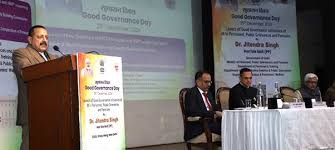
- 26 Dec 2024
In News:
On Good Governance Day, commemorating the 100th birth anniversary of former Prime Minister Atal Bihari Vajpayee, Dr. Jitendra Singh, the Union Minister of State for various departments, launched the ‘Viksit Panchayat Karmayogi’ initiative. This initiative is part of the broader ‘Prashasan Gaon Ki Aur’ campaign, which aims to empower Panchayati Raj Institutions (PRIs) at the grassroots level by enhancing the capacity and competence of elected representatives and officials.
Objective of the ‘Viksit Panchayat Karmayogi’ Initiative
The initiative seeks to strengthen PRIs by providing innovative tools and frameworks for capacity building and participatory governance. It will focus on equipping local leaders and officials with the necessary knowledge and tools to make effective decisions and implement sustainable development initiatives. Piloted in Odisha, Assam, Gujarat, and Andhra Pradesh, it uses e-learning platforms, AI-powered chatbots, and mobile apps to address knowledge gaps and improve service delivery at the local level. This program aligns with the government's mission to decentralize governance and promote citizen-centric and equitable development across rural India.
Other Key Initiatives Launched on Good Governance Day
- iGOT Karmayogi Platform Dashboard: A new dashboard on the iGOT Karmayogi platform, which empowers ministries, departments, and state administrators to monitor progress in capacity-building efforts. The enhanced dashboard includes customizable views, robust data filtering tools, and insights to optimize decision-making, marking the introduction of the 1600th e-learning course. This development is part of the Mission Karmayogi initiative to strengthen the civil service through continuous learning.
- CPGRAMS Annual Report 2024: The CPGRAMS Annual Report provided a review of the Centralized Public Grievance Redress and Monitoring System (CPGRAMS). This platform has been instrumental in resolving over 25 lakh grievances annually, leveraging advanced technologies and multilingual support. The report also highlighted the implementation of the Grievance Redressal Assessment and Index (GRAI), which has improved transparency, accountability, and the efficiency of public service delivery.
- Single Simplified Pension Application Form: A new digital pension system was launched, combining nine separate pension forms into a single, streamlined application. This digital transformation integrates e-HRMS with Bhavishya, reducing processing time and ensuring timely pension disbursement with real-time tracking and Aadhaar-based e-signatures. This system enhances the user experience for pensioners, making the process more efficient and transparent.
- Compendium of Pension Related Instructions 2024: Dr. Singh introduced a comprehensive Compendium of updated rules, procedures, and guidelines related to pensions. This document serves as a reference for pensioners and administrative personnel, ensuring clarity in the pension process and aligning with the government's vision of simplifying and streamlining pension systems.
Good Governance Day 2024 (Sushasan Diwas)
- Observed on: December 25 annually, marking the birth anniversary of Atal Bihari Vajpayee (1924–2018).
- Introduced in 2014: By the Bharatiya Janata Party (BJP) government under Prime Minister Narendra Modi.
- Purpose: To honor Vajpayee's contribution and promote good governance practices in India.
- Objective of Good Governance Day:
- Promote Government Accountability: Ensuring government actions and services are transparent and citizens benefit equally.
- Instill Good Governance Values: Encourages civil servants to practice effective and responsible governance.
- Bridge the Gap: Between citizens and the government through active participation.
- Theme for 2024: "India’s Path to a Viksit Bharat: Empowering Citizens through Good Governance and Digitalisation."
Cephalopods
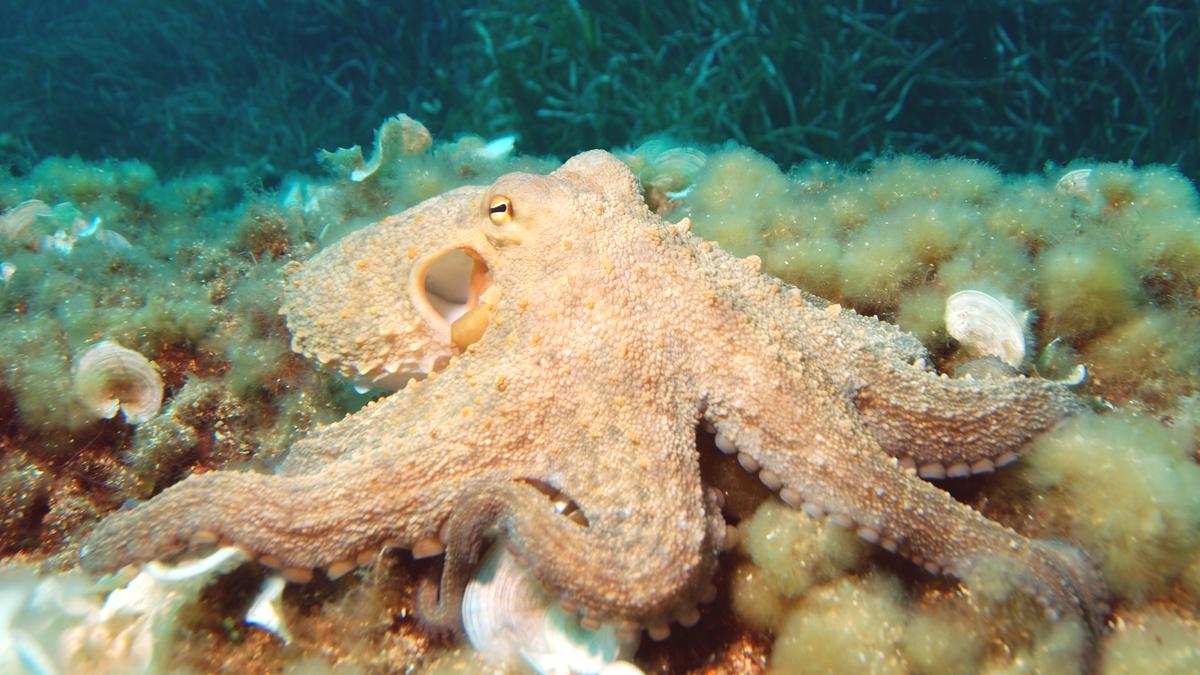
- 26 Dec 2024
In News:
Octopuses and their relatives are a new animal welfare frontier
- Cephalopods are highly intelligent, marine invertebrates that include species such as octopuses, squids, and cuttlefish.
- They are members of the class Cephalopoda in the phylum Mollusca, which is known for its diversity and complex morphology.
- Cephalopods are often considered one of the most behaviorally and morphologically complex classes within this phylum.
Key Features and Anatomy
Cephalopods exhibit several distinctive features:
- Body Structure: They have a head-foot structure, where the head is merged with the foot, and arms/tentacles surround the head. The arms and tentacles are derivatives of the foot, with some species possessing additional appendages for grasping or movement.
- Tentacles and Beak: Cephalopods possess tentacles, often with suction cups or hooks for capturing prey. They also have beak-like jaws, which are used to break down food.
- Eyes and Vision: Their unique W-shaped pupils enhance their vision. Most cephalopods are believed to be colorblind, but they exhibit remarkable visual camouflage through chromatophores (pigment cells) and reflectors beneath their skin, which can produce a wide range of colors and patterns.
- Movement: Cephalopods use jet propulsion to move. By expelling water from their mantle cavity, they can quickly travel through the water. Some species, like octopuses, also "walk" using their arms, while squids and cuttlefish employ fins for propulsion.
- Circulatory System: They have three hearts. Two hearts pump deoxygenated blood, while the third pumps oxygenated blood. Their blood is blue due to the presence of copper-based hemocyanin, which is effective in cold, low-oxygen environments.
- Neural Systems: Cephalopods are known for their advanced nervous systems. A significant portion of the neurons, especially in octopuses, are not located in the central brain but are distributed across the arms in “mini-brains” or ganglia, which helps coordinate movement and sensory functions independently.
Cognitive Abilities
Cephalopods have garnered significant attention due to their impressive cognitive abilities. Their intelligence is demonstrated in several areas:
- Problem-Solving: They are capable of using tools and strategies to solve complex tasks, such as escaping enclosures or catching prey.
- Learning and Memory: Cephalopods exhibit sophisticated learning behaviors, including associative learning and memory. Some species are known to delay gratification, choosing more preferred food items over immediate but less desirable ones. They also show evidence of "reversal learning," where they can adjust their behavior in response to changing environmental cues.
- Camouflage and Communication: Cephalopods can manipulate their skin's color and texture for camouflage, aiding in hunting and predator avoidance. For example, the Australian giant cuttlefish uses its chromatophores to communicate with potential mates or warn off competitors.
Species Diversity
Cephalopods are classified into three primary superorders:
- Octopodiforms: Includes octopuses (e.g., Octopus vulgaris), which are known for their intelligence and ability to solve problems.
- Decapodiforms: Includes squids and cuttlefish (e.g., Sepia officinalis, Architeuthis dux), which possess unique locomotion and hunting strategies.
- Nautiloids: Includes the chambered nautilus, the only cephalopod with an external shell, which is considered more primitive compared to other cephalopods.
Ethical and Conservation Concerns
Due to their intelligence and advanced nervous systems, cephalopods are becoming a focus of ethical debates regarding their treatment. Recently, California and Washington have enacted bans on octopus farming, and Hawaii is considering similar measures. These decisions are driven by the growing understanding of cephalopods' cognitive abilities and their capacity for suffering. As a result, there are increasing calls for humane treatment regulations similar to those for vertebrates.
Environmental and Ecological Role
Cephalopods play crucial roles in marine ecosystems. As carnivorous predators, they help maintain the balance of marine food chains by hunting smaller prey. Some species, such as the cuttlefish, also play important roles in communicating and signaling within their species through visual displays.
Kilauea Volcano
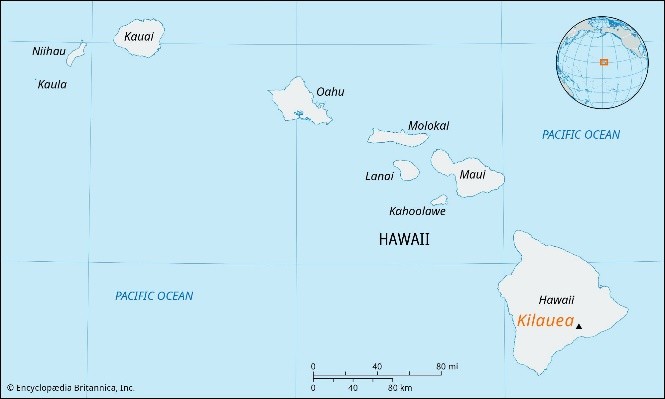
- 24 Dec 2024
In News:
Kilauea volcano erupts on Hawaii's Big Island.
Location:
- Kilauea is located on the southeastern shore of Hawaii’s Big Island, within Hawaii Volcanoes National Park.
Type of Volcano:
- Active Shield Volcano – Kilauea is a shield volcano, meaning it has broad, gentle slopes due to the eruption of fluid lava, which flows easily across large areas. Its eruptions tend to be less explosive than those of other types of volcanoes, creating a relatively safe environment for research and tourism compared to more volatile volcanoes.
Key Features:
- Summit Caldera: Kilauea has a large caldera at its summit, Halema'uma'u, which is a major volcanic feature. The caldera formed from the partial collapse of the volcano after the eruption of large amounts of magma. The caldera spans around 3 miles in length and 2 miles in width, covering an area of over 4 square miles.
- Rift Zones: Kilauea has two active rift zones stretching to the east and southwest, which are areas where lava can erupt and spread across the island. These rift zones are responsible for much of the volcanic activity.
- Lava Flows: Over the last 1,000 years, Kilauea has covered 90% of its surface with lava flows, making it one of the most active volcanoes in the world. It is known for producing highly fluid lava, which allows the lava to travel long distances from the eruption site.
- Historical Activity: Kilauea has had near-continuous eruptions in modern history, particularly between 1983 and 2018, with 34 eruptions since 1952. The volcano has remained active with frequent eruptions, and its lava lake was visible at the summit until 1924.
- Mythological Significance: The volcano is considered the home of Pele, the Hawaiian goddess of fire, lightning, and volcanoes. The Halema'uma'u crater is especially sacred, as it is believed to be the goddess's dwelling place.
Why is Kilauea Significant?
- Active and Young: Kilauea is one of the youngest volcanic products of the Hawaiian hotspot, a series of volcanic islands formed by the movement of the Pacific plate over a stationary plume of hot material beneath the Earth’s crust.
- Continuous Eruptions: It has been erupting regularly, with the exception of a quiet period between 1924 and 1952. Its eruptions are a significant natural phenomenon that scientists and visitors closely monitor.
- Proximity to Mauna Loa: Kilauea is located near Mauna Loa, another active shield volcano. Together, these two volcanoes form a large volcanic region, and their slopes merge seamlessly, making this area home to two of the world's most active volcanoes.
Shield Volcanoes and Kilauea
- Shield Volcanoes: A shield volcano is characterized by its broad, gentle slopes. These slopes are formed by repeated eruptions of fluid basalt lava, which spreads easily over large areas. Unlike composite volcanoes, which have steep, conical shapes, shield volcanoes like Kilauea have a much wider, dome-like appearance.
- Low Explosivity: Eruptions from shield volcanoes are generally low in explosivity, and lava flows are typically slow-moving. However, explosive events can occur if water interacts with lava, but this is relatively rare in Kilauea's eruptions.
Kilauea's Current Activity
In December 2024, Kilauea began erupting again, continuing its pattern as one of the most active volcanoes in the world. This eruption has once again drawn attention to the ongoing volcanic activity on the Big Island of Hawaii, as the volcano regularly contributes to the reshaping of the island and its landscape.
Other Volcanoes in India:
While Kilauea is known for its active status, India also has volcanic features, although most are dormant or extinct:
- Barren Island (Andaman Islands) – India’s only active volcano.
- Narcondam (Andaman Islands) – A dormant volcano.
- Baratang (Andaman Islands) – Known for mud volcanoes.
- Deccan Traps (Maharashtra) – A vast volcanic plateau formed by ancient eruptions.
- Dhinodhar Hills (Gujarat) – Extinct volcano.
- Dhosi Hill (Haryana) – An ancient volcanic site with historical significance.
GenCast AI
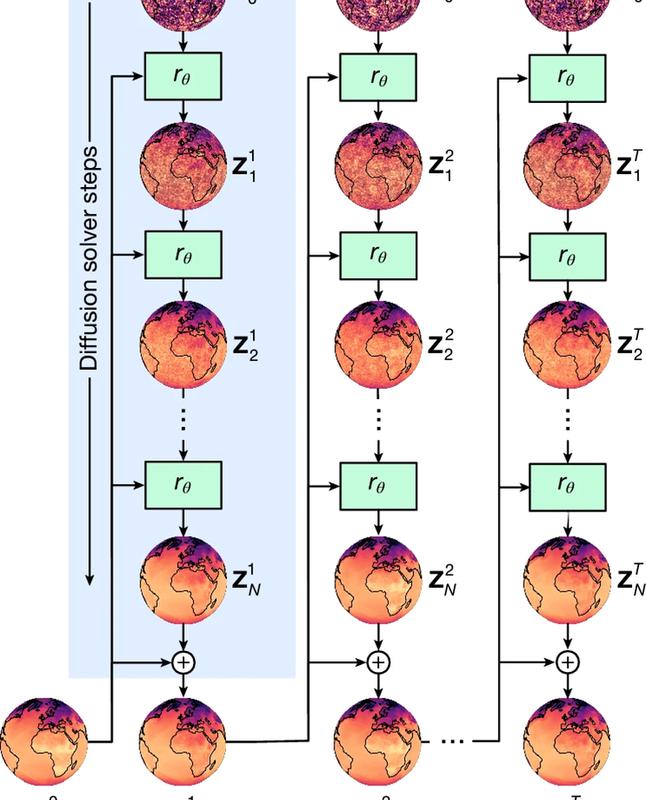
- 24 Dec 2024
In News:
Google’s GenCast AI is an advanced weather forecasting model developed by DeepMind that uses machine learning techniques to provide more accurate and longer-term weather predictions compared to traditional forecasting methods.
How GenCast Works:
- Training on Reanalysis Data:
- GenCast is trained on 40 years of reanalysis data (from 1979 to 2019). This data combines historical weather observations with modern weather forecasts, providing a comprehensive picture of past weather and climate conditions.
- Ensemble Forecasting with AI:
- Unlike traditional Numerical Weather Prediction (NWP) models, which run simulations based on physical laws and initial conditions, GenCast uses an ensemble forecasting approach where multiple predictions are generated by an AI model, not an NWP model.
- It produces a range of possible weather scenarios, each with different starting conditions, to reflect the uncertainty in weather forecasts.
- Neural Network and Diffusion Model:
- GenCast uses a neural network architecture with 41,162 nodes and 240,000 edges that process weather data. Each node accepts data, manipulates it, and passes it to another node, helping to refine and improve predictions.
- It uses a diffusion model, a type of AI model commonly used in generative AI. The model takes noisy input data, processes it through 30 refinement steps, and gradually produces a clearer forecast (de-noising the data).
- The result is a probabilistic forecast, such as "there's a 25% chance of rain in Chennai on December 25," rather than a deterministic forecast, which would provide exact quantities like "5 mm of rain."
- Faster Processing:
- The entire forecast process is incredibly efficient. GenCast can generate 50 ensemble forecasts at once with a spatial resolution of 0.25° x 0.25° (latitude-longitude) and temporal resolution of 12 hours.
- Using Google's TPU v5 units, it can produce these forecasts in just 8 minutes—far faster than traditional supercomputers, which can take several hours to run NWP simulations.
Key Features of GenCast:
- Better Performance on Extreme Weather: GenCast has shown superior accuracy in predicting extreme weather events, such as tropical cyclones, compared to traditional NWP models like those from the European Centre for Medium-Range Weather Forecasts (ECMWF).
- Probabilistic Forecasting: GenCast produces probabilistic forecasts, offering predictions like the likelihood of rain rather than precise measures, which helps with better preparation, especially for extreme weather events.
- Long-Term Forecasting: GenCast can generate forecasts for up to 15 days, which is longer than most traditional models, and is particularly useful for anticipating events like wind power generation and tropical cyclone tracking.
- Efficiency: GenCast's speed and resource efficiency set it apart from traditional NWP models, reducing forecast times dramatically.
Comparison with Traditional Weather Models:
- Numerical Weather Prediction (NWP): Traditional NWP models rely on solving complex physical equations to simulate the atmosphere and provide deterministic forecasts. These models require significant computational power and are typically limited to weather predictions for about a week.
- GenCast's Probabilistic Forecasts: In contrast, GenCast offers probabilistic predictions, making it better suited for providing early warnings about extreme weather, with better lead times for disaster preparation.
Future Developments:
While GenCast is impressive, Google acknowledges the importance of traditional NWP models for both supplying initial conditions and providing the foundational data needed to train AI models like GenCast. Ongoing collaboration with weather agencies is crucial to enhancing AI-based methods for weather prediction.
Overall, GenCast represents a significant leap forward in the use of AI for weather forecasting, with potential for greater accuracy, efficiency, and longer-term predictions compared to current methods.
National Human Rights Commission (NHRC)
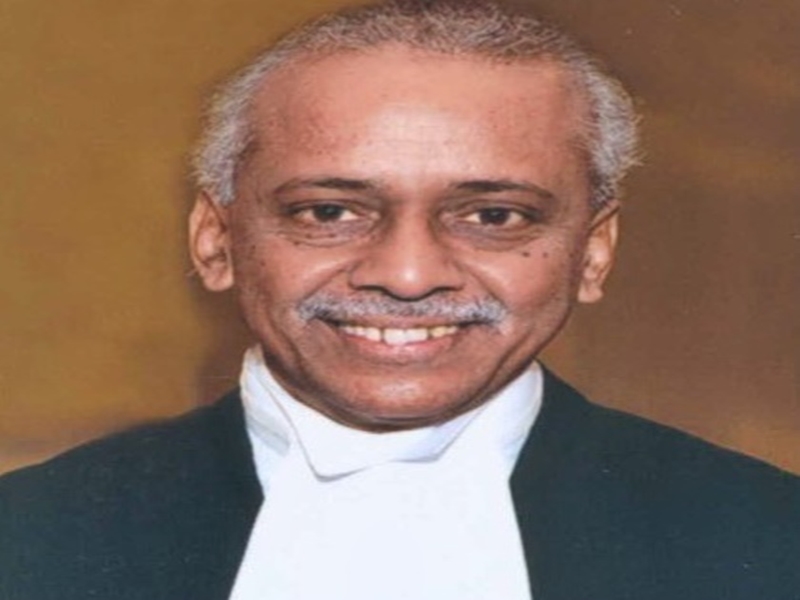
- 24 Dec 2024
In News
Justice V. Ramasubramanian, a retired Supreme Court judge, has been appointed as the new chairperson of the National Human Rights Commission (NHRC). This decision was made by President Droupadi Murmu, and it comes following the completion of Justice Arun Kumar Mishra's tenure as NHRC chairperson in June 2023. After Justice Mishra's retirement, Vijaya Bharathi Sayani served as the acting chairperson. Alongside Justice Ramasubramanian, Priyank Kanoongo and Dr. Justice Bidyut Ranjan Sarangi (Retd.) have also been appointed as members of the commission.
Justice Ramasubramanian had been appointed a judge of the Supreme Court in September 2019 and retired in June 2023. His appointment to the NHRC is seen as a significant development for human rights advocacy and protection in India.
National Human Rights Commission (NHRC)
Establishment and Legal Framework
- Formation Date: The NHRC was established on October 12, 1993, under the Protection of Human Rights Act (PHRA), 1993.
- Paris Principles: It was created in alignment with the Paris Principles (1991), which were endorsed by the UN General Assembly in 1993, aimed at setting standards for national human rights institutions.
- Statutory Body: NHRC is a statutory body, meaning it is established by law, with a primary function to safeguard human rights in India.
Objectives
The NHRC's primary objective is to promote and protect human rights as defined in Section 2(1)(d) of the PHRA, which include fundamental rights such as:
- Right to Life
- Right to Liberty
- Right to Equality
- Right to Dignity
These rights are guaranteed by the Indian Constitution and are essential to the protection of individuals' freedoms and welfare.
Composition of NHRC
- Chairperson: A former Chief Justice of India or a former Supreme Court judge serves as the chairperson.
- Members:
- One former or sitting Supreme Court judge.
- One former or sitting Chief Justice of a High Court.
- Three members, with at least one woman, who have experience in human rights matters.
- Ex-Officio Members: The chairpersons of various National Commissions (e.g., SC/ST, Women, Minorities) and the Chief Commissioner for Persons with Disabilities are also part of the NHRC.
Functions and Powers
The NHRC has several crucial functions and powers to ensure the protection and promotion of human rights:
- Inquiry into Human Rights Violations: The commission can inquire into violations of human rights by public servants or negligence in protecting rights.
- Recommendations: It can make recommendations on how to protect, promote, and effectively implement human rights within India.
- Review of Laws: NHRC assesses various laws, treaties, and international instruments related to human rights.
- Research and Awareness: It promotes research, publications, and awareness about human rights issues, including educating the public about their rights and safeguards.
- Inspection of Institutions: NHRC has the authority to visit and inspect institutions such as jails, detention centers, and other places of confinement to ensure the humane treatment of individuals.
The ‘No-Detention’ Policy and Its Evolution

- 24 Dec 2024
In News:
The ‘no-detention’ policy was a significant part of India’s education reforms under the Right to Education (RTE) Act of 2009. This policy aimed to prevent the detention or expulsion of students until the completion of elementary education (Classes 1-8), with a focus on reducing dropout rates and ensuring every child receives at least basic education. However, the policy has been contentious, with arguments both for and against its implementation.
What was the ‘No-Detention’ Policy and Why Was It Introduced?
The RTE Act (2009) made education free and compulsory for children aged 6 to 14, under Article 21A of the Constitution. Section 16 of the Act specifically prohibited the detention or expulsion of students in elementary education (Classes 1-8). The rationale was to prevent the demotivation and fear of failure that might cause children to drop out of school, especially those from marginalized backgrounds. By promoting automatic progression through grades, the policy aimed to ensure that no child was left behind due to academic struggles.
Key to this system was Continuous and Comprehensive Evaluation (CCE), which assessed students on a holistic basis, beyond just formal exams, encouraging learning through regular feedback and assessments.
Amendments to the RTE Act (2017 and 2019)
In 2017, a Bill was introduced to amend the RTE Act, following concerns about the effectiveness of the ‘no-detention’ policy. The amended policy allowed for regular exams in Classes 5 and 8. If students failed, they would be given a re-examination within two months. If they still did not meet promotion criteria, detention could be enforced. This amendment empowered the Centre and states to decide whether to detain students in these grades.
The amendment came after criticism of the original policy for promoting students without sufficient learning progress. States like Madhya Pradesh and Punjab argued that no-detention was leading to poor academic performance, and called for a return to the traditional system of promoting students based on examination results.
Arguments for and Against the No-Detention Policy
Arguments for No-Detention:
- Reduced Dropout Rates: The policy helped ensure students, especially from disadvantaged backgrounds, continued in school without the fear of failure, leading to a drop in dropout rates.
- Holistic Development: It encouraged a child-centric learning approach where students were assessed on their overall development rather than just exam performance.
- Social Inclusivity: By promoting students regardless of performance, it was hoped that education would be more inclusive, preventing marginalization of students from lower socio-economic backgrounds.
Arguments Against No-Detention:
- Decline in Learning Outcomes: The policy led to a lack of motivation for students to perform academically. Without the accountability of exams, many students became less serious about their studies.
- Low Teacher Accountability: With automatic promotion, teachers had less incentive to ensure quality learning, leading to an overall dip in teaching standards.
- Impact on Educational Standards: Data indicated a decline in learning levels in government schools, as students were passed through the system without mastering the required skills.
In 2015, the Central Advisory Board of Education (CABE) conducted a study suggesting that more flexibility was needed in the policy, allowing schools to retain students who were significantly behind. However, there were differing views within the committee. Some members argued that detention had no proven benefits, and that the real issue was the poor quality of the education system itself.
In 2016, the TSR Subramanian Committee on the New Education Policy suggested continuing the no-detention policy until Class 5, citing evidence of reduced dropout rates and increased enrollment. However, other states pushed for scrapping it due to concerns over declining educational standards.
The Shift Toward Scrapping the No-Detention Policy
By 2019, the RTE Act was amended to give states the discretion to hold back students in Classes 5 and 8, if they failed to meet the promotion criteria. This change came after state feedback that the no-detention policy was having adverse effects on learning outcomes and teacher accountability.
In 2024, the Ministry of Education took further steps to formalize this shift by introducing new rules under the RTE Act Amendment. Students failing to meet the promotion criteria in Classes 5 and 8 will be given additional instruction and an opportunity for a re-examination. If they still fail, they can be detained, with specialized guidance provided to help them catch up.
Which States Continue or Scrapped the No-Detention Policy?
The decision to maintain or scrap the policy varies across states and union territories:
- States Retaining No-Detention Policy: Andhra Pradesh, Arunachal Pradesh, Goa, Karnataka, Kerala, Maharashtra, Odisha, Telangana, Uttar Pradesh, among others, continue to implement the no-detention policy, citing its role in minimizing dropouts and promoting inclusivity.
- States That Have Scrapped the Policy: Delhi, Punjab, Madhya Pradesh, Rajasthan, West Bengal, and Gujarat have already discarded the policy, opting for examinations and re-examinations in Classes 5 and 8 to ensure better academic accountability.
Why the Controversy?
The debate over the no-detention policy hinges on balancing academic accountability with social inclusivity. Supporters argue that it ensures children from marginalized communities receive their full elementary education, while opponents point to the decline in learning standards, especially in government schools, as a major issue.
In summary, while the no-detention policy was introduced with the noble aim of reducing school dropouts and ensuring every child completed at least elementary education, its effectiveness has been questioned due to concerns over declining learning outcomes. The recent changes represent a shift towards better accountability and quality in education, while still ensuring that children receive additional support before being detained.
Space Docking Experiment (SpaDeX) Mission
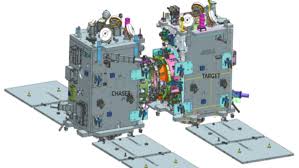
- 24 Dec 2024
In News:
The Indian Space Research Organisation (ISRO) is set to launch its Space Docking Experiment (SpaDeX) mission, a key milestone in India’s space capabilities. The mission will deploy two 220-kg satellites, SDX01 (Chaser) and SDX02 (Target), into a 740 km orbit using the PSLV-C60 rocket. SpaDeX aims to demonstrate the technology for satellite docking, a critical component for future space missions such as lunar exploration and the development of India's own space station, Bharatiya Antariksh Station (BAS).
Key Objectives of SpaDeX Mission:
- Primary Objective: To demonstrate the rendezvous, docking, and undocking of two small spacecraft (SDX01 and SDX02) autonomously.
- Secondary Objectives: Include testing electric power transfer between the docked spacecraft, composite spacecraft control, and post-docking payload operations.
The mission will see the two spacecraft gradually approach each other, performing a series of maneuvers, starting at a 20 km distance and closing to millimeter-scale distances before docking. Once docked, they will execute secondary tasks, such as scientific payload operations, using advanced technologies including high-resolution cameras, multi-spectral payloads, and radiation monitors.
Technological Innovations:
- Docking Mechanism: An indigenous, motor-driven, low-impact, androgynous docking system with capture, extension/retraction, and rigidization mechanisms. Both spacecraft are equipped with identical docking systems to simplify operations.
- Advanced Sensors: The spacecraft will use a Laser Range Finder (LRF), Proximity & Docking Sensors (PDS), and Rendezvous Sensors for precise distance measurement and to guide the docking process.
- Inter-Satellite Communication: The spacecraft will employ autonomous inter-satellite links (ISL) for real-time communication and data sharing.
- RODP Processor: This system, based on GNSS, ensures accurate position and velocity determination for the spacecraft during the docking procedure.
Significance of the SpaDeX Mission:
- Technological Milestone: SpaDeX positions India as the fourth country, after the US, Russia, and China, to develop space docking technology.
- Space Exploration: The successful demonstration will facilitate future space exploration, including Chandrayaan-4 and interplanetary missions.
- Modular Space Infrastructure: Space docking is essential for building multi-modular space stations, which allows the construction of large structures in space and enhances flexibility for future missions.
- Satellite Servicing: Docking enables satellite servicing, including repairs, refueling, and upgrades, which increases the operational lifespan of satellites.
SpaDeX Mission for India’s Space Station:
The SpaDeX mission is a crucial step towards India’s plans for the Bharatiya Antariksh Station (BAS). This will be India’s first modular space station, designed to conduct advanced scientific research, including in life sciences and medicine. BAS is expected to begin operations by 2035, and the development of docking technology is pivotal for its assembly and operation.
Mission Launch Details:
The PSLV-C60 rocket is set to launch the SpaDeX mission from Sriharikota. The mission is a demonstration of India's growing space capabilities and its indigenous technologies, including the Bharatiya Docking System (BDS).
Challenges and Technological Requirements:
The docking process requires extremely precise maneuvering, as the two spacecraft will be traveling at speeds of 28,800 km/h and must reduce their relative velocity to just 0.036 km/h before docking. This level of precision is crucial for future missions involving spacecraft servicing, crew transfers, and the construction of space infrastructure like BAS.
In addition to the docking demonstration, SpaDeX will carry 24 academic and startup payloads aboard the PSLV’s fourth stage, POEM (PSLV Orbital Experimental Module-4), offering a valuable platform for microgravity research.
Future Prospects:
The success of SpaDeX will pave the way for more complex missions, such as India’s lunar and Mars exploration programs, the development of the Bharatiya Antariksh Station, and international collaborations in satellite servicing and space infrastructure.
72nd North Eastern Council (NEC) Plenary Session
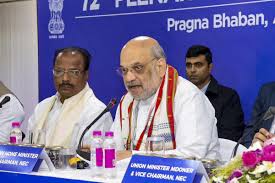
- 23 Dec 2024
Overview:
The 72nd Plenary of the North Eastern Council (NEC), concluded in Agartala, Tripura, marking the second time the city hosted this significant event since 2008. The plenary featured a series of high-level discussions focused on accelerating development and addressing the socio-economic challenges of the North Eastern Region (NER), which includes Arunachal Pradesh, Assam, Manipur, Meghalaya, Mizoram, Nagaland, Sikkim, and Tripura.
Key Highlights:
- Pre-Plenary Technical Sessions: Central ministries presented their developmental agendas for the NER, charting a path forward for the region's growth and addressing key challenges.
- Main Plenary:
- Presiding Officers: The session was chaired by the Union Home Minister and NEC Chairman, Shri Amit Shah, along with DoNER Minister, Shri Jyotiraditya M. Scindia, and Minister of State, Dr. Sukanta Majumdar.
- Participants: Governors, Chief Ministers, Chief Secretaries, Planning Secretaries, and high-ranking officials from all eight northeastern states will engage in strategic discussions to foster regional development.
- Agartala as Host:
- Agartala's selection as the venue signifies the evolving role of the city in regional development, as plenary sessions are usually held in Shillong and Guwahati.
- Significance of the NEC:
- The North Eastern Council (NEC), established in 1971, plays a pivotal role in the socio-economic development of the region. It was initially an advisory body but has evolved into a regional planning agency with a larger mandate.
- The NEC has contributed significantly to the development of critical infrastructure in the region, such as over 11,500 kilometers of roads, power generation through NEEPCO, and educational institutions like RIMS.
- Prime Minister's Vision for the NER:
- The Prime Minister’s vision for the region revolves around recognizing it as 'Ashta Lakshmi'—symbolizing immense potential and cultural richness. The NEC is central to realizing this vision through initiatives like the PM-DevINE scheme.
Key Achievements of the NEC:
- Over 11,500 kilometers of road construction, improving regional connectivity.
- Increased power generation capacity via projects managed by NEEPCO.
- Established institutions like the Regional Institute of Medical Sciences (RIMS) and others that cater to regional educational and technical needs.
Recent Focus and Shift in Governance:
- In the 72nd Plenary, the Union Home Minister highlighted a shift in the focus of police forces in northeastern states, urging them to focus not just on insurgency control but on ensuring the constitutional rights of citizens, reflecting a new governance phase in the region.
RBI's Report on State Finances (2024-25)
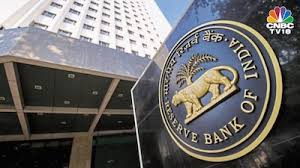
- 23 Dec 2024
In News:
The Reserve Bank of India's (RBI) report titled "State Finances – A Study of Budgets of 2024-25" provides a comprehensive analysis of the fiscal position of Indian states.
Key Highlights
- States' Performance Post-Pandemic
- Improved Tax Revenue: The average tax buoyancy has increased significantly from 0.86 (2013-2020) to 1.4 (2021-2025), reflecting enhanced tax collection efficiency.
- Capital Expenditure: There is a consistent rise in capital expenditure, which increased from 2.4% of GDP in 2021-22 to 2.8% in 2023-24 and is budgeted at 3.1% in 2024-25. This indicates a growing focus on investment in infrastructure like highways and bridges.
- Fiscal Discipline and Debt Levels
- Gross Fiscal Deficit (GFD): The gross fiscal deficit is projected at 3.2% of GDP in 2024-25, a slight increase from 2.9% in 2023-24.
- Debt-to-GDP Ratio: While states' debt-to-GDP ratio decreased from 31.0% in March 2021 to 28.5% in March 2024, it remains higher than the pre-pandemic level of 25.3% in 2019.
- Increased Borrowing and Debt Pressure
- Market Borrowings: States' reliance on market borrowings has increased, accounting for 79% of the GFD in FY25. Gross market borrowings surged by 32.8%, totaling Rs 10.07 trillion in FY23-24.
- Electricity Distribution Companies (DISCOMs): Continued losses in DISCOMs, accumulating Rs 6.5 lakh crore by 2022-23 (2.4% of India's GDP), continue to strain state finances.
- Rising Subsidy Burden
- Many states are offering subsidies and loan waivers, such as farm loan waivers and free services (electricity, transport, etc.), which risk diverting funds away from critical infrastructure projects. This includes significant subsidies for income transfers to farmers, women, and youth.
- Fiscal Transparency Concerns
- Revenue Generation Issues: Revenue growth from non-tax sources and central grants is slowing. The pace of State Goods and Services Tax (SGST) growth has also slowed down, which impacts overall state revenues.
- Lack of Fiscal Transparency: Inadequate reporting of off-budget liabilities obfuscates the true fiscal position, leading to a lack of clarity and accountability in state finances.
Recommendations by the RBI
- Debt Consolidation: States are encouraged to create clear and transparent debt reduction paths, with consistent reporting of off-budget liabilities to improve fiscal accountability.
- Expenditure Efficiency: Focus on outcome-based budgeting, ensuring funds are directed towards productive and sustainable investments, particularly in climate-sensitive areas.
- Subsidy Rationalization: States should contain and optimize subsidies to ensure they don't overshadow essential growth-promoting expenditure.
- Efficient Borrowings: Reduce over-reliance on market borrowings to control fiscal deficits and minimize financial risks.
- Revenue Generation: Improve collection mechanisms for SGST, strengthen non-tax revenue sources, and increase grants to reduce dependence on borrowings.
Balancing Subsidies and Fiscal Discipline
- Importance of Subsidies: Welfare programs like subsidies for healthcare, food security (e.g., Public Distribution System), and LPG connections (e.g., Pradhan Mantri Ujjwala Yojana) play a crucial role in human development and economic equality by supporting vulnerable populations.
- Importance of Fiscal Discipline: Excessive welfare spending without corresponding revenue generation can lead to high deficits and public debt, threatening long-term fiscal stability. Maintaining fiscal discipline ensures sustainable public finances, promotes investor confidence, and supports economic growth.
Green fixed deposits
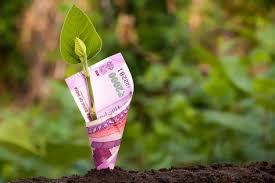
- 23 Dec 2024
In News:
Green fixed deposits (FDs) are a type of investment scheme offered by banks and financial companies, aimed at environmentally-conscious investors. They function similarly to traditional fixed deposits, where funds are locked in with a bank for a fixed tenure. The primary distinction between green and regular deposits lies in the allocation of funds. While regular deposits are pooled into a common fund, the funds from green deposits are exclusively allocated to projects that promote environmental sustainability.
Key Features of Green Fixed Deposits:
- Investment Purpose: The funds raised through green FDs are directed towards environmentally beneficial projects, such as renewable energy initiatives (solar and wind power), clean technology, organic farming, and energy-efficient infrastructure.
- Eligibility: Green deposits are available to various entities, including individuals, Hindu Undivided Families (HUFs), societies, clubs, non-profit organizations, and sole proprietorships.
- Interest Rates: The interest rates on green deposits may or may not differ from regular deposits, depending on the policies set by the lending institution. Some banks and financial institutions, like IndusInd Bank, Federal Bank, DBS Bank India, and HDFC Ltd., offer green deposits, with Bank of Baroda recently launching the BOB Earth Green Term Deposit with an interest rate of up to 7.15% per annum.
- Safety: Like regular fixed deposits, green deposits are insured by the Deposit Insurance and Credit Guarantee Corporation (DICGC) under the provisions of the DICGC Act, 1961, ensuring the safety of the investment.
- Overdraft Facility: Banks may offer overdraft facilities against green deposits, providing more flexibility to investors.
- Premature Withdrawal: If the investor chooses to withdraw the deposit before the agreed tenure (after six months), the green FD will be converted into a regular fixed deposit.
- Denomination: Green deposits are denominated in Indian Rupees only.
Centenary of Belgaum session

- 23 Dec 2024
In News:
The Belagavi Session of 1924, marking its centenary in December 2024, holds significant historical and cultural value in India's freedom struggle. This session, the 39th All-India Congress session, was presided over by Mahatma Gandhi, the only instance he served as the Congress president. It took place in Belagavi, Karnataka, from December 26-27, 1924, amidst a growing momentum for India’s fight against British colonial rule.
Key Aspects of the Belagavi Session:
- Gandhi's Leadership: This was the only Congress session Gandhiji chaired, marking a pivotal moment in the freedom movement. His leadership emphasized non-violence, self-reliance, and unity among diverse groups, setting the stage for future movements like the Salt March and Quit India Movement.
- Focus on Social Change: Gandhi used the session to push for social reforms, including the abolition of untouchability, promotion of khadi (hand-spun cloth), and supporting village industries. These initiatives aimed to make Congress a movement for both political freedom and social upliftment.
- Promoting Hindu-Muslim Unity: Gandhi strongly advocated for Hindu-Muslim unity, recognizing its critical importance in the larger struggle for independence. His stance emphasized communal harmony during a time of social and political divisions.
- Cultural Impact: The session also featured musical performances, including contributions from Hindustani maestros like Vishnu Digambar Paluskar and Gangubai Hangal. The Kannada song “Udayavagali Namma Chaluva Kannada Nadu” became an anthem for the region's unification movement.
- Legacy: The session had a lasting impact, with initiatives such as promoting khadi, reducing Congress membership fees, and creating new avenues for peasant participation in the freedom movement. The Pampa Sarovara well, dug during the event, continues to provide water to parts of Belagavi.
Centenary Celebrations:
The centenary of the Belagavi Session is being celebrated with a range of events, including:
- A Congress Working Committee (CWC) meeting on December 26, 2024.
- A public rally with the theme “Jai Bapu, Jai Bhim, Jai Samvidhan.”
- Cultural events and exhibitions are also planned, including competitions, tableaux, and charkha marathons.
National Farmers' Day
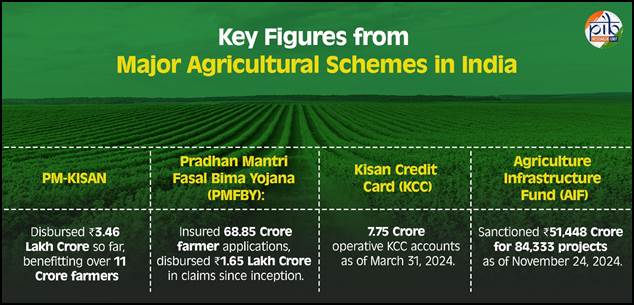
- 23 Dec 2024
In News:
National Farmers' Day, also known as Kisan Diwas, is celebrated annually on December 23rd to honor the vital contributions of Indian farmers and commemorate the birth anniversary of Chaudhary Charan Singh, India's fifth Prime Minister. A passionate advocate for rural development and farmers' welfare, Charan Singh's policies laid the foundation for several reforms aimed at uplifting the agrarian economy. His contributions continue to inspire government initiatives that prioritize the welfare of farmers, fostering sustainable agricultural growth and ensuring food security for the nation.
The Legacy of Chaudhary Charan Singh
Chaudhary Charan Singh was born on December 23, 1902, in Noorpur, Uttar Pradesh. His deep understanding of rural issues and commitment to improving farmers’ lives earned him the title of "Kisan Leader". Throughout his political career, he championed reforms such as the Debt Redemption Bill (1939), which alleviated the financial burdens of farmers, and the Land Holding Act (1960), which promoted fair distribution of agricultural land. He also advocated for Minimum Support Price (MSP), and his policies laid the groundwork for NABARD and other farmer-centric institutions.
Significance of Kisan Diwas
Kisan Diwas highlights the importance of agriculture in India’s economy and employment, with farmers constituting nearly 50% of the workforce. The day emphasizes the need for policies that address farmers' challenges such as climate change, financial constraints, and technological adoption. It also serves as a reminder of the necessity to empower farmers through innovative solutions, financial security, and sustainable farming practices.
Key Government Initiatives for Farmer Welfare
The Indian government has launched several schemes to address the challenges faced by farmers and support their socio-economic upliftment:
- Pradhan Mantri Kisan Samman Nidhi (PM-KISAN): Provides direct income support to small and marginal farmers.
- Pradhan Mantri Fasal Bima Yojana (PMFBY): Offers crop insurance to mitigate financial risks due to crop loss.
- Pradhan Mantri Kisan Maandhan Yojana (PM-KMY): A pension scheme for farmers to ensure long-term social security.
- Soil Health Card Scheme: Promotes efficient fertilizer use and soil health by providing farmers with personalized soil health reports.
- Farmer Producer Organizations (FPOs): These entities help farmers collectively access markets, reduce costs, and improve bargaining power.
- Modified Interest Subvention Scheme (MISS): Provides affordable credit to farmers, especially for agriculture-related activities.
- Kisan Credit Card (KCC): Helps farmers access timely credit for agricultural purposes at concessional rates.
Significant Budget Allocations and New Schemes
The government has drastically increased its budget allocation to the agriculture sector. From Rs. 21,933.50 crore in 2013-14, the budget has risen to Rs. 1,22,528.77 crore for 2024-25, underlining the government's commitment to farmer welfare and sustainable agricultural development.
Notable Initiatives:
- Namo Drone Didi Scheme: This initiative, aimed at empowering Women Self-Help Groups (SHGs), supports the use of drones for agricultural purposes, including fertilizer and pesticide application, with 80% financial assistance.
- Clean Plant Programme (CPP): Enhances the quality and productivity of horticulture crops by ensuring disease-free planting material.
- Digital Agriculture Mission: Aims to modernize farming with digital infrastructure, including crop estimation surveys and e-agriculture platforms.
- National Mission on Natural Farming (NMNF): Encourages chemical-free, sustainable farming practices.
Farmers' Role in Nation-Building
India’s agricultural sector not only sustains the livelihoods of millions but also contributes significantly to the country's GDP. In FY 2023-24, agriculture contributed 17.7% to the Gross Value Added (GVA). With over 54% of the country's land dedicated to agriculture, farmers are critical to food security and rural development.
In 2023-24, India achieved a record foodgrain production of 332.2 million tonnes, illustrating the resilience of Indian farmers in ensuring food availability despite challenges like climate change.
IPBES Nexus Report
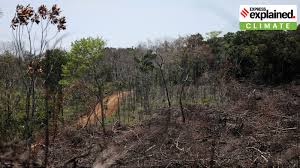
- 22 Dec 2024
In News:
The IPBES Nexus Report, formally titled The Assessment Report on the Interlinkages Among Biodiversity, Water, Food, and Health, was released to address the interconnected global challenges of climate change, biodiversity loss, food insecurity, water scarcity, and health risks. The report stresses that these challenges are deeply intertwined and cannot be solved separately; doing so would lead to ineffective or even counterproductive results.
Key Highlights of the Nexus Report
- Interconnections Between Global Challenges: The report emphasizes the strong interlinkages between the five major global challenges:
- Biodiversity Loss
- Water Scarcity
- Food Insecurity
- Health Risks
- Climate Change
It argues that efforts to address these challenges independently are ineffective and often exacerbate the problems. For example, scaling up food production to combat hunger can put more pressure on land, water, and biodiversity.
- Economic Cost of Biodiversity Loss:
- Global GDP Dependency: Over half of the global GDP (approximately $58 trillion annually) depends on nature. Biodiversity degradation significantly undermines productivity and economic output.
- Unaccounted Costs: The neglect of biodiversity in economic activities contributes to a loss of $10-25 trillion annually.
- Delayed Action: Delaying action on biodiversity conservation could double the costs within the next decade, potentially incurring $500 billion per year in additional costs.
- Synergistic Approach: The report identifies over 70 response options that promote synergistic outcomes across the five challenges. These include:
- Restoring Carbon-Rich Ecosystems: Such as forests, soils, and mangroves to address climate change and biodiversity loss.
- Managing Biodiversity to Prevent Disease Transmission: Effective biodiversity management reduces risks of diseases passing from animals to humans (zoonotic diseases).
- Sustainable Diets: Promoting diets that are both healthy and environmentally sustainable.
- Nature-Based Solutions: Implementing solutions that rely on natural processes to mitigate challenges like water scarcity and climate change.
- Inequality and Vulnerability: The report highlights how inequality exacerbates the challenges. Vulnerable populations, especially those living in areas where biodiversity has sharply declined, face increased health risks, malnutrition, and economic instability. 41% of people live in regions where biodiversity loss has been particularly severe, and 9% face high health burdens due to these declines.
- Principles for Transformative Change: The report outlines principles for achieving transformative change:
- Equity and Justice: Ensuring fair distribution of resources and opportunities for all.
- Pluralism and Inclusion: Embracing diverse perspectives and voices in policy-making.
- Respectful Human-Nature Relationships: Recognizing and nurturing reciprocal relationships between humans and nature.
- Adaptive Learning and Action: Continuously evolving policies and strategies based on feedback and new evidence.
- Urgency for Immediate Action: The report stresses that immediate action is critical. If the world continues to neglect biodiversity, it will face not only environmental collapse but also a missed opportunity for economic growth. Immediate implementation of nature-positive strategies could unlock $10 trillion in business opportunities and create 400 million jobs by 2030.
The IPBES Transformative Change Assessment Report
- This report builds upon the 2019 IPBES Global Assessment Report and advocates for transformative change to halt biodiversity loss and achieve global development goals. It defines transformative change as a system-wide shift in:
- Views: Changing how we think about nature and its value.
- Structures: Reforming systems of governance and organization.
- Practices: Changing behaviors and practices that harm nature.
Key Challenges to Transformative Change:
- Disconnection from Nature: Human societies' disconnection from nature, often rooted in historical domination, is a major cause of biodiversity loss.
- Economic Inequality: The concentration of power and wealth exacerbates environmental degradation.
- Unsustainable Consumption: Unsustainable patterns of consumption and production are significant drivers of environmental harm.
Synergistic Strategies for Transformation:
- Conserve and Regenerate: Restore ecosystems that have both ecological and cultural value.
- Mainstream Biodiversity: Integrate biodiversity considerations into sectors like agriculture, forestry, and infrastructure development.
- Transform Economic Systems: Adopt policies such as true cost accounting and sustainability-based tax principles to internalize the environmental costs of economic activities.
- Inclusive Governance: Promote governance systems that involve all stakeholders, especially local communities, in decision-making.
SAMARTH UDYOG BHARAT 4.0 INITIATIVE

- 22 Dec 2024
In News:
The SAMARTH Udyog Bharat 4.0 initiative, launched by the Ministry of Heavy Industries (MHI), aims to enhance the competitiveness of the Indian capital goods sector by promoting the adoption of Industry 4.0 technologies. This initiative is part of the Scheme for Enhancement of Competitiveness in the Indian Capital Goods Sector.
Key Features of SAMARTH Udyog Bharat 4.0 Initiative
- Establishment of Smart Manufacturing Hubs: Under this initiative, four Smart Advanced Manufacturing and Rapid Transformation Hub (SAMARTH) Centres have been set up across India:
- Centre for Industry 4.0 (C4i4) Lab, Pune
- IITD-AIA Foundation for Smart Manufacturing, IIT Delhi
- I-4.0 India @ IISc, Bengaluru
- Smart Manufacturing Demo & Development Cell, CMTI, Bengaluru
- Cluster Industry 4.0 Experience Centres: In addition to the above centres, 10 cluster Industry 4.0 experience centres have been approved. These will be established under a Hub and Spoke model, managed by the C4i4 Lab in Pune, and spread across India.
- Key Achievements:
- Model Factories: Development of an Industry 4.0 enabled Model Factory at C4i4, Pune, and a smart production-based factory at CMTI Bengaluru.
- Industry 4.0 Solutions: More than 50 use-cases for Industry 4.0 solutions were compiled to support implementation.
- Maturity Assessment Tool: Creation of the Industry 4.0 Maturity Model (I4MM), specifically designed to assess the readiness of Indian manufacturing companies for Industry 4.0.
- Online Assessment Tool: Launch of a free online assessment tool by C4i4 Lab, Pune, to help MSMEs evaluate their maturity in adopting Industry 4.0 technologies.
- Training and Awareness:
- Workshops and Seminars: Regular awareness seminars, workshops, and knowledge-sharing events are organized to educate industries about Industry 4.0.
- Workforce Training: The SAMARTH Centres have trained over 5000 professionals on smart manufacturing and Industry 4.0 technologies.
- Consultancy Services: The centres offer consultancy in areas such as IoT hardware, software development, and data analytics, along with incubation support for start-ups and MSMEs.
- Impact on MSMEs:
- Digital Maturity Assessments: Over 100 digital maturity assessments have been completed for the auto industry, and more than 500 improvement initiatives have been identified.
- Training and Capacity Building: Over 500 digital champions have been trained on Industry 4.0 technologies.
- Focus on MSMEs: While no direct financial assistance is provided to industries, including MSMEs, under this initiative, the SAMARTH Centres play a key role in helping them adopt Industry 4.0 technologies and build their capabilities.
Key Takeaways:
- The SAMARTH Udyog Bharat 4.0 initiative seeks to increase the global competitiveness of India's capital goods and manufacturing sectors.
- It leverages Industry 4.0 technologies such as IoT, automation, data analytics, and AI to modernize manufacturing processes.
- The initiative involves setting up 4 major Smart Manufacturing Hubs and 10 regional experience centres across the country to facilitate awareness, training, and adoption of Industry 4.0 among manufacturers, especially MSMEs.
- While it does not provide financial aid, it helps industries improve their digital maturity, trains workforce, and guides them through consultancy and workshops.
Next Generation DNA Sequencing Facility (NGS)

- 22 Dec 2024
Recently, the Union Minister Shri Bhupender Yadav inaugurated two groundbreaking facilities at the Wildlife Institute of India (WII), Dehradun: the Advanced Facility for Pashmina Certification and the Next Generation DNA Sequencing (NGS) Facility. These facilities are designed to enhance India’s capabilities in wildlife conservation and support the growth of traditional crafts like Pashmina weaving.
Key Highlights
Next Generation DNA Sequencing Facility (NGS)
The NGS facility is a cutting-edge research tool that enables the high-throughput analysis of entire genomes. This technology is pivotal in studying wildlife genetics and biodiversity by decoding millions of DNA sequences at once.
Applications in Wildlife Conservation:
- Genetic Diversity and Health: NGS helps assess the genetic diversity of species and their population health.
- Evolutionary Relationships: It aids in understanding the evolutionary history and unique adaptations of species.
- Disease Surveillance: The technology supports studying pathogen-host interactions and monitoring diseases affecting wildlife.
- Combating Illegal Wildlife Trade: NGS can help detect illegal wildlife trade and the movement of endangered species.
- Impact of Climate Change: It is crucial for studying how climate change affects genetic diversity and species survival.
This facility positions WII as a leading hub for molecular research, enabling more precise conservation efforts and studies on endangered species like tigers, elephants, and riverine dolphins.
Advanced Facility for Pashmina Certification
Launched under a Public-Private Partnership (PPP) model between WII and the Export Promotion Council for Handicrafts (EPCH), the Pashmina Certification Centre (PCC) has been significantly upgraded. The facility now includes a Scanning Electron Microscope (SEM) with Energy Dispersive Spectroscopy (EDS) for advanced wool testing and certification.
Key Features of the Upgraded Facility:
- Fiber Analysis: The SEM-EDS technology ensures accurate identification and certification of Pashmina fibers, free from any prohibited materials.
- Unique ID and E-certificates: Each certified product is tagged with a unique ID and e-certificate, enhancing traceability and authenticity.
- Global Trade Facilitation: The certification process eliminates delays at exit points, ensuring smoother international trade for certified Pashmina products.
The PCC has already certified over 15,000 Pashmina shawls and plays a crucial role in supporting the livelihoods of artisans and weavers in Jammu & Kashmir. By ensuring the authenticity of Pashmina, the facility also helps combat the illegal trade of Shahtoosh wool, which is harmful to the Tibetan antelope (Chiru).
Significance for Artisans and Conservation:
- Support for Artisans: The upgraded facility helps increase the credibility of Pashmina products in global markets, benefiting local artisans and weavers.
- Conservation Impact: By certifying genuine Pashmina products, the initiative indirectly contributes to the conservation of the Tibetan antelope by reducing illegal poaching and trade.
- Sustainability: The PCC is a self-sustaining model that not only supports conservation but also generates revenue and creates job opportunities.
Overview of the Genome India Project
The Genome India Project is a gene mapping initiative launched by the Department of Biotechnology, aiming to create a comprehensive database of genetic variations across the Indian population. The project focuses on understanding genetic diversity and its implications for health, agriculture, and biodiversity conservation in India.
Goals:
- Comprehensive Gene Mapping: The project seeks to map the genetic variations found within India’s diverse population, enabling better healthcare and disease management.
- Conservation and Biodiversity: Insights from the project will also aid in wildlife conservation by understanding the genetic health of endangered species and their ability to adapt to environmental changes.
This initiative is aligned with India’s broader goals of using advanced technologies to address modern conservation challenges and foster a sustainable future.
India State of Forest Report 2023
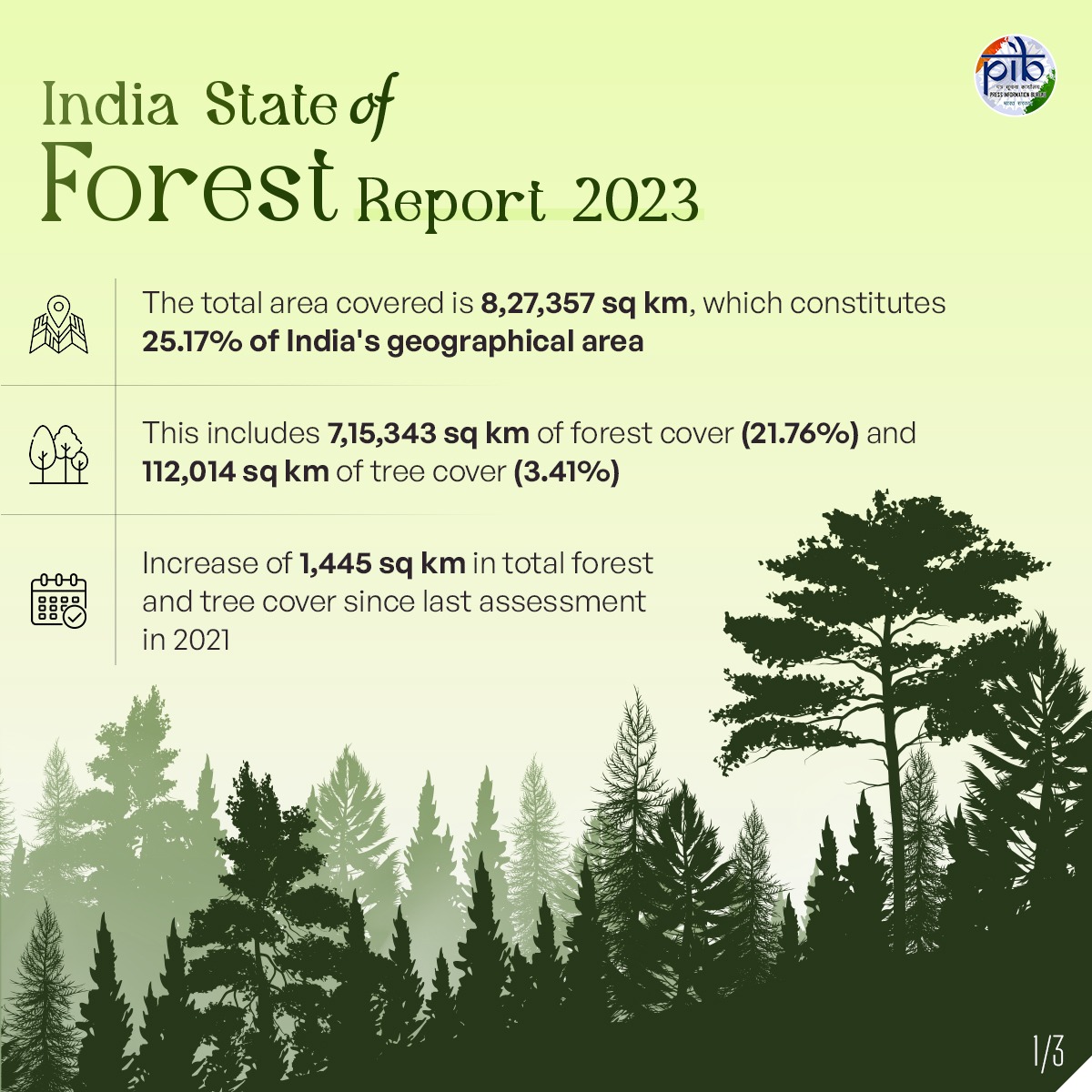
- 22 Dec 2024
In News:
The India State of Forest Report 2023 (ISFR 2023) was released by the Union Minister for Environment, Forest, and Climate Change at the Forest Research Institute in Dehradun. This biennial report, published by the Forest Survey of India (FSI), assesses the forest and tree resources of the country based on satellite data and field-based inventories. The ISFR 2023 is the 18th edition of this report, with the first published in 1987.
Key Findings
- Total Forest and Tree Cover:
- Area: 827,357 sq km (25.17% of India's geographical area)
- Breakdown:
- Forest cover: 715,343 sq km (21.76%)
- Tree cover: 112,014 sq km (3.41%)
- Increase from 2021: An increase of 1,445 sq km, including:
- Forest cover: +156 sq km
- Tree cover: +1,289 sq km
- State-wise Forest and Tree Cover:
- Top 3 States by Total Forest and Tree Cover Area:
- Madhya Pradesh (85,724 sq km)
- Arunachal Pradesh (67,083 sq km)
- Maharashtra (65,383 sq km)
- Top 3 States by Forest Cover:
- Madhya Pradesh (77,073 sq km)
- Arunachal Pradesh (65,882 sq km)
- Chhattisgarh (55,812 sq km)
- States with Maximum Increase in Forest and Tree Cover:
- Chhattisgarh, Uttar Pradesh, Odisha, and Rajasthan
- Mizoram, Gujarat, and Odisha showed the most significant increase in forest cover.
- Top 3 States by Total Forest and Tree Cover Area:
- Forest Cover Percentage (as a proportion of total geographical area):
- Lakshadweep: 91.33% (Highest)
- Mizoram: 85.34%
- Andaman & Nicobar Islands: 81.62%
- 19 States/UTs have over 33% forest cover, with 8 states having more than 75%.
- Mangrove Cover:
- Total Mangrove Cover: 4,992 sq km (a decrease of 7.43 sq km from 2021).
- Notable Changes: Gujarat saw the largest loss of mangroves, whereas Andhra Pradesh and Maharashtra reported increases.
- Carbon Stock and Climate Targets:
- Total Carbon Stock: 7,285.5 million tonnes (an increase of 81.5 million tonnes from the previous assessment).
- Nationally Determined Contributions (NDC):
- India’s carbon stock has reached 30.43 billion tonnes of CO2 equivalent.
- Achieved an additional 2.29 billion tonnes of carbon sink compared to the 2005 baseline, towards the 2030 target of 2.5-3.0 billion tonnes.
- Bamboo and Timber Production:
- Bamboo Bearing Area: Estimated at 154,670 sq km, an increase of 5,227 sq km since 2021.
- Timber Potential: Estimated annual potential production of 91.51 million cubic meters from trees outside forests.
Achievements:
- There has been a notable increase in the forest and tree cover, particularly in states like Chhattisgarh, Uttar Pradesh, Odisha, and Rajasthan.
- The carbon stock in forests has increased, helping India make significant progress in its climate change mitigation goals.
- The bamboo bearing area has also expanded, promoting biodiversity and economic benefits through bamboo cultivation.
Concerns:
- Mangrove Loss: Gujarat experienced a notable decrease in mangrove area, highlighting the need for focused conservation efforts in coastal regions.
Forest Survey of India (FSI) Overview
- Established: 1981, under the Ministry of Environment, Forest and Climate Change (MoEFCC).
- Mission: To assess, monitor, and research forest resources across India, providing data for sustainable management, national planning, and conservation.
- Headquarters: Dehradun, Uttarakhand.
India’s National Quantum Mission
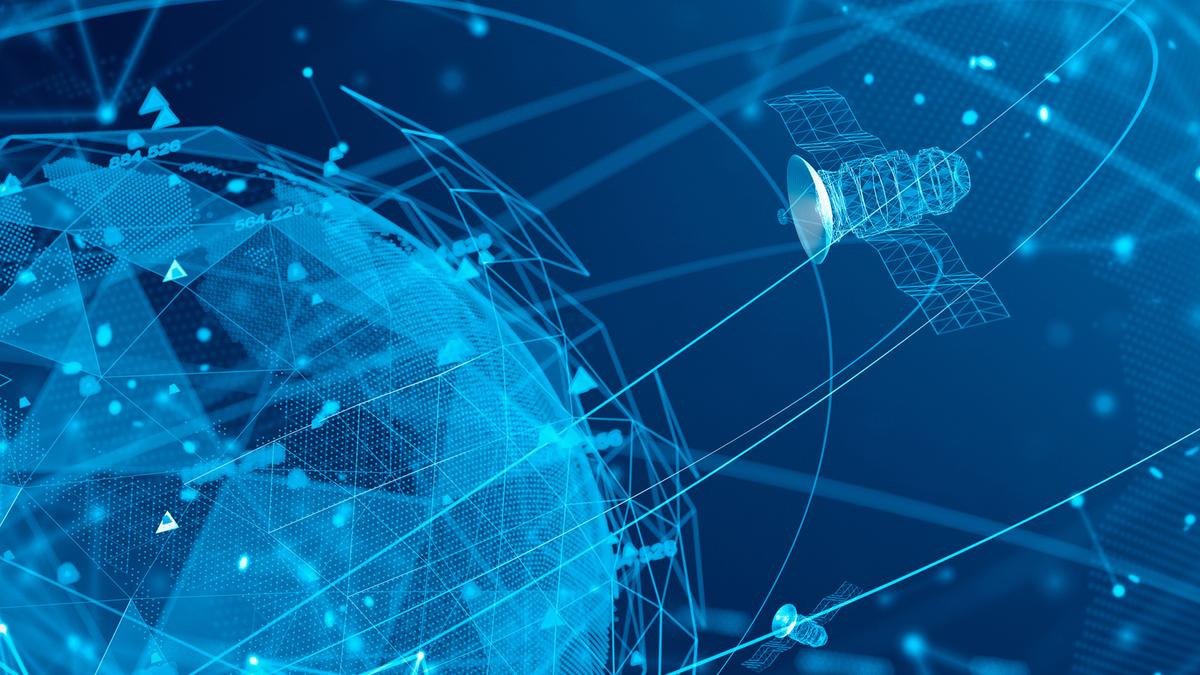
- 22 Dec 2024
In News:
India is preparing to launch its first quantum satellite within 2-3 years as part of its National Quantum Mission (NQM), a significant initiative aimed at positioning India as a global leader in quantum technologies. This satellite will play a pivotal role in enhancing the security of communications, particularly in the face of the potential threat posed by quantum computers to existing cryptographic systems.
What is a Quantum Satellite?
A quantum satellite is a type of communication satellite that uses quantum physics principles to secure data transmission. Unlike conventional satellites that rely on classical encryption, quantum satellites leverage quantum mechanics to achieve unbreakable encryption through Quantum Key Distribution (QKD).
Key Features:
- Quantum Key Distribution (QKD): Ensures secure key sharing, revealing any attempts of eavesdropping.
- Security Advantage: Provides "unconditional security" by detecting any interference during the transmission process.
- Data Transmission: Unlike conventional satellites that encode data in classical bits, quantum satellites encode information in quantum states or qubits.
What is Quantum Cryptography?
Quantum cryptography is a technique that uses the laws of quantum mechanics to secure communications. The most widely used method is Quantum Key Distribution (QKD), which ensures that the keys used to encrypt and decrypt messages remain secret and unbreakable.
Key Mechanisms:
- Quantum Measurement: Any attempt to measure the quantum state (such as a photon carrying information) changes its state, alerting the sender and receiver to potential eavesdropping.
- Quantum Entanglement: When two quantum particles (photons) are entangled, a change in one will instantaneously affect the other, ensuring that the key remains secure.
Why is Quantum Satellite Important?
The advent of quantum computing threatens the cryptographic methods that secure current digital communications. Quantum computers, with their vast computational power, could potentially crack encryption codes that are currently deemed secure. Quantum satellites aim to counteract this threat by using quantum cryptography to make communications tamper-proof.
Security in the Quantum Era:
- Classical Encryption: Relies on mathematical problems that are difficult to solve without the decryption key.
- Quantum Encryption: Uses quantum properties, such as superposition and entanglement, to offer superior security.
National Quantum Mission (NQM)
The National Quantum Mission (NQM) was approved by the Union Cabinet in April 2023 with a budget of ?6,000 crore for implementation over eight years (2023-2031). The mission aims to accelerate the development and application of quantum technologies, with a focus on quantum communication, quantum computing, quantum sensing, and quantum metrology.
Key Objectives:
- Development of Quantum Computers: Building intermediate-scale quantum computers with 50-1000 qubits.
- Quantum Communication: Establishing secure, satellite-based quantum communication systems within India and internationally.
- Research and Innovation: Fostering quantum technologies and creating a self-reliant ecosystem.
India’s Advancements in Quantum Technology
India is making significant progress in quantum research and communication. The Raman Research Institute in Bengaluru has identified Hanle, Ladakh as an ideal location for quantum communication experiments due to its optimal atmospheric conditions.
The Indian Space Research Organisation (ISRO) has already demonstrated successful free-space quantum communication over short distances (300 meters). The upcoming quantum satellite will build upon this progress to create secure quantum communication networks within India and internationally.
Global Context: Micius Satellite and China’s Lead
China is a global leader in quantum communications, having launched the world’s first quantum satellite, Micius, in 2016. Micius demonstrated the feasibility of secure quantum communication by generating pairs of entangled photons. India’s quantum satellite will build on this technology to create robust, long-range quantum communication networks.
Limitations of Quantum Key Distribution (QKD)
Despite its promise, QKD faces several limitations:
- Technological Maturity: The technology is still in the experimental phase, and large-scale commercial implementation is not yet feasible.
- Authentication Issues: QKD lacks reliable methods to authenticate the transmission source, leaving it vulnerable to impersonation attacks.
- Infrastructure Costs: Establishing and maintaining QKD networks requires specialized hardware, leading to higher costs.
- Denial-of-Service Risks: Eavesdroppers can trigger the abort mechanism, leading to transmission interruptions.
- Signal Loss: Atmospheric and distance-related attenuation can degrade the quality of quantum signals.
National Quantum Mission and Sectoral Impact
The NQM aligns with India's national priorities, including Digital India, Make in India, and Start-up India. The mission’s outcomes are expected to impact various sectors, such as:
- Healthcare: Quantum computing for drug design and medical research.
- Space Exploration: Enhancing communication security for space missions.
- Banking and Financial Services: Strengthening data security and transaction integrity.
- Energy: Improving energy systems and smart grids through advanced sensing technologies.
IRIS²: The European Union's Ambitious Satellite Network
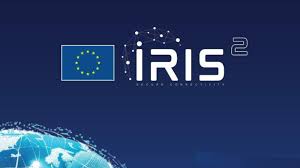
- 21 Dec 2024
In News:
The European Union (EU) has announced the launch of IRIS² (Infrastructure for Resilience, Interconnectivity, and Security by Satellite), a highly ambitious space program that aims to enhance satellite connectivity, security, and resilience for both governmental and civilian applications. The initiative is set to rival major global satellite systems, such as Elon Musk's Starlink, and aims to provide secure, high-speed broadband connectivity, particularly in underserved regions.
Key Features of IRIS²:
- Satellite Constellation: The system will consist of 290 satellites, including 264 in Low Earth Orbit (LEO) and 18 in Medium Earth Orbit (MEO).
- First Launch: The first satellite for the program is scheduled for launch in 2029.
- Secure Connectivity: IRIS² is designed to provide secure, high-speed broadband services, particularly for European regions that lack reliable connectivity.
- Collaboration: The project is a collaboration between the EU, the European Space Agency (ESA), and private sector partners, including SES, Eutelsat, and Airbus.
- Funding: The program is funded through a €10.6 billion (~$11 billion) investment, with a 12-year concession for its implementation.
Applications of IRIS²:
- Governmental Use:
- Border Surveillance: Enhanced monitoring for national security.
- Crisis Management: Reliable communication during natural disasters and emergencies.
- Infrastructure Security: Safeguarding key national infrastructure.
- Defense: Boosting military communication resilience.
- Civilian Use:
- Broadband Access: Providing internet access in rural and underserved areas.
- Smart Energy: Supporting management of energy grids and related technologies.
- Transportation: Ensuring reliable communication and navigation in aviation, maritime, and automotive sectors.
- Remote Healthcare: Improving healthcare access in remote locations.
Significance of IRIS²:
- Strategic Asset: The program will strengthen EU sovereignty in space technology and improve its technological independence, reducing reliance on non-European satellite systems.
- Cyber and Communication Resilience: IRIS² is designed to enhance resilience against cyber threats and communication disruptions, ensuring uninterrupted service for both public and private sectors.
- Commercial Benefits: The satellite network will provide high-speed connectivity for businesses across Europe, offering a boost to commercial activities in remote and underserved areas.
- Complementary to Existing EU Programs: IRIS² complements other EU space initiatives, such as Copernicus (Earth observation) and Galileo (satellite navigation), enhancing the EU's capabilities in the space sector.
Overview of the IRIS² Satellite Network:
- Deployment in LEO and MEO:
- 264 satellites in LEO will provide low-latency communication for a wide range of applications.
- 18 satellites in MEO will offer broader coverage and support for global connectivity.
- Funding and Partners: The program is funded by the EU, ESA, and private firms, including SES, Eutelsat, and Airbus, ensuring both public and private sector involvement in the project.
- Applications:
- The network will provide secure satellite services for critical government functions, including surveillance, defense, and crisis management.
- It will also support civilian uses, such as broadband, smart grids, and transportation, and will facilitate cloud-based services.
Strategic and Geopolitical Importance:
- Boost to European Competitiveness: By developing its own satellite system, the EU will enhance its competitive position in the global space sector.
- Security and Autonomy: IRIS² will help Europe maintain control over its communication infrastructure, strengthening its autonomy and reducing dependence on external players for critical services.
- Resilience in Crisis Situations: In times of disruption (e.g., natural disasters, cyberattacks), IRIS² will ensure that Europe can maintain secure, reliable connectivity.
72% Decline in Bird Species at Bordoibam-Bilmukh Bird Sanctuary, Assam

- 21 Dec 2024
In News:
A recent study has revealed a dramatic decline in the number of bird species at Assam's Bordoibam-Bilmukh Bird Sanctuary (BBBS). The sanctuary, once home to a rich diversity of avian species, has experienced a 72% decline in bird species over the past 27 years. The study, published in the Journal of Threatened Taxa, highlights the severe biodiversity crisis facing the sanctuary.
Key Findings:
- Bird Species Count Decline:
- In 1997, the sanctuary recorded 167 bird species.
- Recent surveys (2022-2024) have only recorded 47 species, marking a 71.85% decline in species count.
- Surveys:
- 2011 Survey: Recorded 133 species (86 resident, 23 migratory, 24 local migrants).
- 2017-2018 Survey: Found 120 species, along with a variety of other biodiversity, including macrophytes, fish, and aquatic ferns.
- Impact on Migratory Birds:
- Migratory species like Brown Shrike, Citrine Wagtail, and White Wagtail (winter migrants), and the Lesser Kestrel (summer migrant) were recorded recently.
- Main Causes of Decline:
- Anthropogenic Activities: Overfishing, poaching, excessive harvesting of aquatic plants, and egg collection.
- Land Use Changes: Habitat degradation due to agriculture, machinery noise, and land being used as pasture areas.
- Disruption of Food Chain: Habitat loss and changes in foraging and breeding grounds for both migratory and resident birds.
- Species of Concern:
- Poached Birds: Lesser whistling duck, Fulvous whistling duck, White-breasted waterhen, Indian pond heron, Eastern spotted dove, and Yellow-footed green pigeon.
- Threatened Species: The sanctuary is home to globally threatened species like the Spot-billed Pelican and Lesser Adjutant.
About Bordoibam-Bilmukh Bird Sanctuary:
- Location: Situated between Dhemaji and Lakhimpur districts in Assam, the sanctuary spans 11.25 sq. km at an altitude of 90-95 meters above sea level.
- History: Declared a wildlife sanctuary in 1996, it was originally part of the Subansiri River which has now shifted 7 km from the wetland.
- Climate & Vegetation:
- Moist tropical climate with an average annual rainfall of around 2,000 mm.
- The vegetation includes flooded valley grasslands and wetland plants, providing crucial habitat for migratory birds.
- Significance for Avian Species:
- Hosts a variety of migratory waterfowl, especially during the winter.
- Home to globally threatened bird species like the Spot-billed Pelican and Lesser Adjutant, along with resident birds such as the Indian Pond Heron and Fulvous Whistling Duck.
Conservation Efforts:
- The decline in bird species at the sanctuary has raised alarm about the degradation of wetland habitats.
- The study emphasizes that habitat loss can disrupt the food chain, water table, and nutrient cycle, which in turn harms both the ecosystem and human communities.
- The authors of the study advocate for intense conservation efforts to restore and protect the sanctuary’s biodiversity.
Assam's Biodiversity:
- Assam is one of India's most biodiverse states, with around 950 bird species, including 17 endemic species.
- The state also hosts 55 Important Bird and Biodiversity Areas (IBA), which are vital hotspots for avian species.
New Undersea Cables to Boost India’s Digital Connectivity
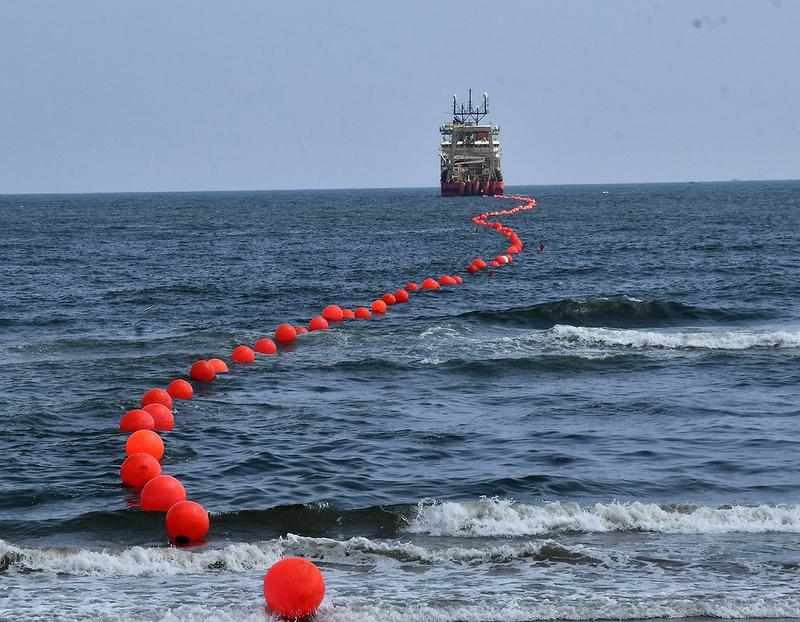
- 21 Dec 2024
In News:
India is expanding its digital infrastructure with the launch of two major undersea cable systems aimed at enhancing its Internet connectivity with Asia and Europe. The India Asia Xpress (IAX) and India Europe Xpress (IEX) are set to provide additional data links between India and these regions, supporting the growing demand for data usage. This also marks India’s increasing involvement in submarine cable resilience and security discussions.
Key Points:
- New Cable Systems:
- India Asia Xpress (IAX): Connects Chennai and Mumbai with Singapore, Thailand, and Malaysia.
- India Europe Xpress (IEX): Connects Chennai and Mumbai with France, Greece, Saudi Arabia, Egypt, and Djibouti.
- Total Length: Both cables, together spanning over 15,000 kilometers, will expand India’s undersea cable network.
- Ownership and Investment:
- Both cable systems are owned by Reliance Jio, with a strategic investment from China Mobile.
- Geopolitical Impact:
- These expansions are a response to growing Internet traffic, as well as India's rising geopolitical ambitions. They help bolster India’s defense strategy, improving cable resilience against disruptions from cyberattacks or physical damages.
- India’s active role in maritime cable network security is being closely watched, especially in key regions like the Bay of Bengal and the South China Sea.
- Past Cable Disruptions:
- In March, three cables connecting India to West Asia and Europe were disrupted, impacting Internet traffic. However, India’s alternate routing systems and data centers ensured services remained operational, highlighting the country’s resilience.
- International Role:
- India’s role in submarine cable resilience is growing. Telecom Secretary Neeraj Mittal is part of the International Advisory Body for Submarine Cable Resilience, established by the International Telecommunication Union (ITU).
Impact on India’s Connectivity:
- Bangladesh's Role:
- Plans to sell bandwidth from Bangladesh to Northeast India were recently put on hold. However, this does not significantly impact India as Northeast India already benefits from substantial fiber-optic connectivity through Power Grid Corporation of India’s transmission lines.
About Underwater Cables:
- What Are Undersea Cables?
- Undersea cables are fiber-optic cables laid under the ocean to transmit data across vast distances at high speeds.
- New Cable Systems:
- IAX: Connects India to Asia (Singapore, Thailand, Malaysia).
- IEX: Connects India to Europe (France, Greece, Saudi Arabia, Egypt, Djibouti).
- How They Work:
- Fiber-optic technology uses laser beams through thin glass fibers to transmit data.
- The cables are protected by multiple layers of insulation, plastic, and steel wires and are buried near shores or laid directly on the ocean floor in deep sea regions.
- Cable Features:
- Data Capacity: New cables can carry up to 224 Tbps (Terabits per second).
- Durability: Designed to avoid damage from fault zones, fishing areas, or anchors.
- Speed: Faster and more cost-efficient than satellite communications for large-scale data transfer.
Why Undersea Cables Over Satellites?
- Higher Capacity: Submarine cables handle far more data than satellites.
- Cost-Effective: More affordable for high-volume data transfers.
- Reliability: Cables provide more stable connections, especially for large-scale data, compared to satellites.
Strengthening Multimodal and Integrated Logistics Ecosystem (SMILE) program

- 21 Dec 2024
On December 20, 2024, the Government of India and the Asian Development Bank (ADB) signed a $350 million policy-based loan aimed at expanding India's manufacturing sector and improving the resilience of its supply chains. This loan is part of the Strengthening Multimodal and Integrated Logistics Ecosystem (SMILE) program.
Key Points:
- Loan Agreement Signatories:
- Department of Economic Affairs (DEA), Ministry of Finance, Government of India
- Department for Promotion of Industry and Internal Trade (DPIIT), Ministry of Commerce and Industry
- Asian Development Bank (ADB)
- SMILE Program:
- Goal: Strengthen the logistics ecosystem to enhance India's manufacturing sector and improve supply chain resilience.
- Structure: The program includes two subprograms focusing on strategic reforms in logistics and infrastructure development.
- Key Features of the SMILE Program:
- Strengthening Multimodal Infrastructure: Enhances logistics infrastructure at the national, state, and city levels.
- Standardization: Improves warehousing and other logistics assets to attract private sector investment.
- External Trade Logistics: Enhances efficiencies in external trade logistics.
- Smart Systems: Adopts systems for efficient, low-emission logistics to promote sustainability.
- Expected Outcomes:
- Cost Reduction & Efficiency: Strategic reforms will reduce logistics costs and improve efficiency.
- Job Creation: Infrastructure development and reforms are expected to generate substantial employment opportunities.
- Gender Inclusion: The program promotes gender inclusion through economic growth initiatives.
- Impact on India’s Economy:
- The transformation of India’s logistics sector will enhance the competitiveness of the manufacturing sector and drive sustainable economic growth.
About the Asian Development Bank (ADB):
- Headquarters: Mandaluyong, Metro Manila, Philippines.
- Established: December 19, 1966.
- Members: 69 countries, including both regional (e.g., India, China) and non-regional (e.g., USA, Japan) members.
- Function: ADB promotes social and economic development in Asia and the Pacific, providing loans, grants, and technical assistance for development projects.
- Key Shareholders:
- Japan: 15.57%
- USA: 15.57%
- India: 6.32%
- China: 6.43%
- Australia: 5.77%
2023 National Tansen Samman
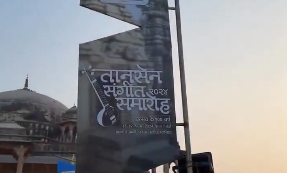
- 21 Dec 2024
In News:
- The prestigious National Tansen Samman for 2023 was conferred upon Pt. Swapan Choudhary, a renowned tabla maestro from Kolkata, at the National Tansen Festival held in Gwalior, Madhya Pradesh.
Key Highlights:
- Tansen Festival: This festival, renowned for its celebration of classical music, is organized annually in Gwalior, which is considered the music capital of Madhya Pradesh.
- Prize Details: As part of the honor, Pt. Swapan Choudhary was presented with an honorarium of five lakh rupees, a citation plaque, and a shawl-shriphal.
- About the Award:
- The National Tansen Samman was established in 1980 by the Madhya Pradesh government to recognize exceptional contributions to Indian classical music.
- It is named after Tansen, one of India's most celebrated classical musicians.
- The award is the highest national honor in the field of Indian classical music.
- Additional Award:
- Raja Mansingh Tomar Samman for 2023 was awarded to Sanand Nyas, an institution from Indore. This institution has been active for 35 years in the promotion of classical music, drama, and cultural festivals.
- Pt. Swapan Choudhary’s Remark: In response to receiving the honor, Pt. Choudhary expressed his gratitude and pride in joining the ranks of distinguished artists awarded the National Tansen Samman.
About Tansen: The Iconic Musician
- Legacy: Tansen, also known as Miyan Tansen, was a prominent Indian classical musician, composer, and vocalist. He is credited with popularizing several ragas and revolutionizing the Indian classical music tradition.
- Role at Akbar’s Court: Tansen was one of the Navaratnas (nine jewels) in the court of Mughal Emperor Akbar. He held the title of Mian, meaning "learned man," bestowed upon him by Akbar.
- Contributions:
- Tansen is famous for his compositions, including the introduction of notable ragas such as Miyan ki Malhar, Miyan ki Todi, and Darbari.
- He also improved the plucked rabab, which is of Central Asian origin, enhancing its role in Indian classical music.
- Historical Influence: Tansen's life and work are surrounded by extensive legend, and his contributions remain deeply influential in the development of Indian classical music today.
Specialised Investment Fund (SIF)
- 20 Dec 2024
In News:
SEBI has introduced a new asset class called Specialised Investment Fund (SIF), designed to bridge the gap between Mutual Funds (MFs) and Portfolio Management Services (PMS). This new asset class is targeted at informed investors who are willing to take on higher risks.
SIFs offer a blend of the flexibility seen in PMS and the regulatory framework governing MFs, making them suitable for investors seeking more customized and riskier investment strategies.
Key Features of SIF:
- Minimum Investment: The minimum investment threshold for SIFs is Rs. 10 lakh. However, accredited investors (who meet specific eligibility criteria) can invest with lower amounts.
- Expense Structure: SIFs will follow the same expense structure as mutual funds. For equity schemes up to Rs 500 crore in size, the maximum allowable fee is 2.25% of assets under management (AUM), with the cap decreasing as the fund size grows. This ensures transparency and keeps management fees in line with existing mutual fund norms.
- Investment Strategies: SIFs can offer a mix of open-ended, close-ended, and interval investment strategies. Specific details on permissible strategies will be released by SEBI in the future.
- Investment Restrictions:
- For debt instruments, a single issuer's exposure is capped at 20% of the total AUM. However, this can be raised to 25% with approval from the Asset Management Company (AMC)’s trustees and board of directors. Government securities are exempt from this limit.
- For equities, the exposure is capped at 10% of the total AUM, in line with the norms for mutual funds.
- Ownership in Companies: The maximum permissible ownership in any company is raised to 15%, including the MF exposure.
- REITs and InvITs: SIFs can invest a maximum of 20% of their AUM in Real Estate Investment Trusts (REITs) and Infrastructure Investment Trusts (InvITs). However, the exposure to a single issuer in these areas is limited to 10%.
- Branding and Marketing: SEBI mandates AMCs to distinguish SIFs clearly from MFs through distinct branding, advertising, and website presence. This helps in creating a clear differentiation between the two products for investors.
- Risk Management and Compliance: AMCs managing SIFs are required to have robust risk management systems, internal control systems, and expertise to handle the investments effectively. Trustees are responsible for ensuring that the AMC complies with all risk management, investor protection, and disclosure norms.
Regulatory Context:
- The regulations on SIFs are similar to those governing mutual funds, including taxation and other compliance requirements.
- SEBI also introduced the Mutual Fund Lite regulations to encourage the growth of passively managed funds, such as exchange-traded funds (ETFs) and index funds. These regulations are designed to reduce compliance burdens and lower the barriers to entry for new players in the mutual fund industry.
Significance of SIFs:
- Targeted Audience: SIFs cater to investors who are knowledgeable and willing to take on riskier investments, thereby filling a gap between traditional MFs (which are more conservative) and PMS (which offer highly customized solutions).
- Higher Flexibility: While SIFs maintain some regulations of MFs, they offer more flexibility in investment choices, allowing AMCs to explore more dynamic strategies.
- Investor Protection: By maintaining the same expense structure as mutual funds and ensuring compliance with regulatory frameworks, SEBI aims to protect investor interests while allowing for higher returns that come with riskier investments.
Parliamentary Standing Committee on Rural Development & Panchayati Raj (PSC) and MGNREGA
- 20 Dec 2024
In News:
Recently, the Parliamentary Standing Committee (PSC) on Rural Development and Panchayati Raj highlighted several issues within the Mahatma Gandhi National Rural Employment Guarantee Scheme (MGNREGS). The committee recommended reforms to address these challenges, especially concerning wage rates, workdays, payment systems, and infrastructure.
Key Challenges in MGNREGS Implementation:
- Wages Not Aligned with Inflation:
- MGNREGA wage rates have failed to keep pace with inflation, diminishing the purchasing power of rural workers. This discourages workers from completing the full 100 workdays.
- The wage guarantee of 100 days per household often falls short, especially during times of natural calamities or post-pandemic recovery.
- Revision of Permissible Works:
- The list of allowable work under MGNREGA is outdated and doesn't cover all rural needs, such as flood protection or land erosion management. Delayed revisions limit its effectiveness in addressing region-specific challenges.
- Delayed Payment of Wages:
- Issues like Aadhaar-based payment system (ABPS) glitches, inactive Aadhaar details, or frozen bank accounts often lead to delayed wage payments.
- The delay in wages undermines the scheme's goal of providing livelihood support.
- Unemployment Allowance:
- Those who apply for work but are not provided employment within 15 days are entitled to a daily unemployment allowance. However, this allowance is rarely paid, and when it is, the amounts are insufficient.
- Weak Social Audits:
- Social audits are a vital mechanism to ensure transparency and accountability. However, in the 2020-21 fiscal year, only 29,611 Gram Panchayats out of a total were audited, pointing to the weak social audit system.
- Lack of Ombudsman:
- Despite the provision for 715 ombudsmen, only 263 have been appointed. This reduces the oversight and accountability of the scheme.
Recommendations for MGNREGS Reform by the PSC:
- Revision of Wage Rates:
- Link MGNREGA wages to an inflation index, ensuring wages reflect the rising cost of living in rural areas.
- The base year (2009-2010) should be updated to align with current inflation trends.
- Increase Days of Work:
- The PSC recommended increasing the guaranteed workdays from 100 to 150 days. This will provide better livelihood security, especially in times of economic distress.
- Improvement in Payment Mechanisms:
- The committee recommended maintaining alternative payment systems alongside ABPS to prevent wage delays.
- A streamlined process should be put in place to ensure timely wage disbursement, reducing bureaucratic hurdles.
- National Mobile Monitoring System (NMMS):
- The committee stressed the importance of training programs to help beneficiaries effectively use the NMMS.
- It also suggested retaining alternative attendance methods to avoid exclusion due to technological barriers. NMMS helps enhance transparency and accountability by tracking attendance and work progress.
- Sufficient Fund Allocation:
- The committee emphasized the need for adequate financial allocations for MGNREGS to make it more effective in providing livelihood security to rural households.
Additional Context and Statistics:
- In 2024-25, the average wage increase under MGNREGA was just Rs 28/day.
- The MGNREGA wage increase for 2023-24 ranged from 2%-10%.
- The Consumer Price Index for Agricultural Labour (CPI-AL) is used to determine wage rates, although Dr. Nagesh Singh Committee (2017) recommended using the CPI Rural instead.
About the Parliamentary Standing Committee on Rural Development & Panchayati Raj (PSC):
- Established: August 5, 2004.
- Jurisdiction: The committee oversees the Ministry of Rural Development and the Ministry of Panchayati Raj.
- Composition: 31 members – 21 from Lok Sabha and 10 from Rajya Sabha.
- Functions:
- Reviews Demands for Grants and reports.
- Examines Bills referred by the Speaker or Chairman.
- Reviews the annual reports of relevant ministries.
- Considers national policy documents.
About MGNREGA:
- Launched: 2005 by the Ministry of Rural Development.
- Objective: Provides 100 days of unskilled manual work at minimum wages for rural households annually.
- Key Features:
- Legal Guarantee: Work must be provided within 15 days of request.
- Unemployment Allowance: If work isn't provided within 15 days, beneficiaries are entitled to a daily allowance.
- Women-Focused: At least one-third of beneficiaries are women.
- Social Audits: Mandated by the Gram Sabha for all projects under the scheme.
Masali Village in Gujarat
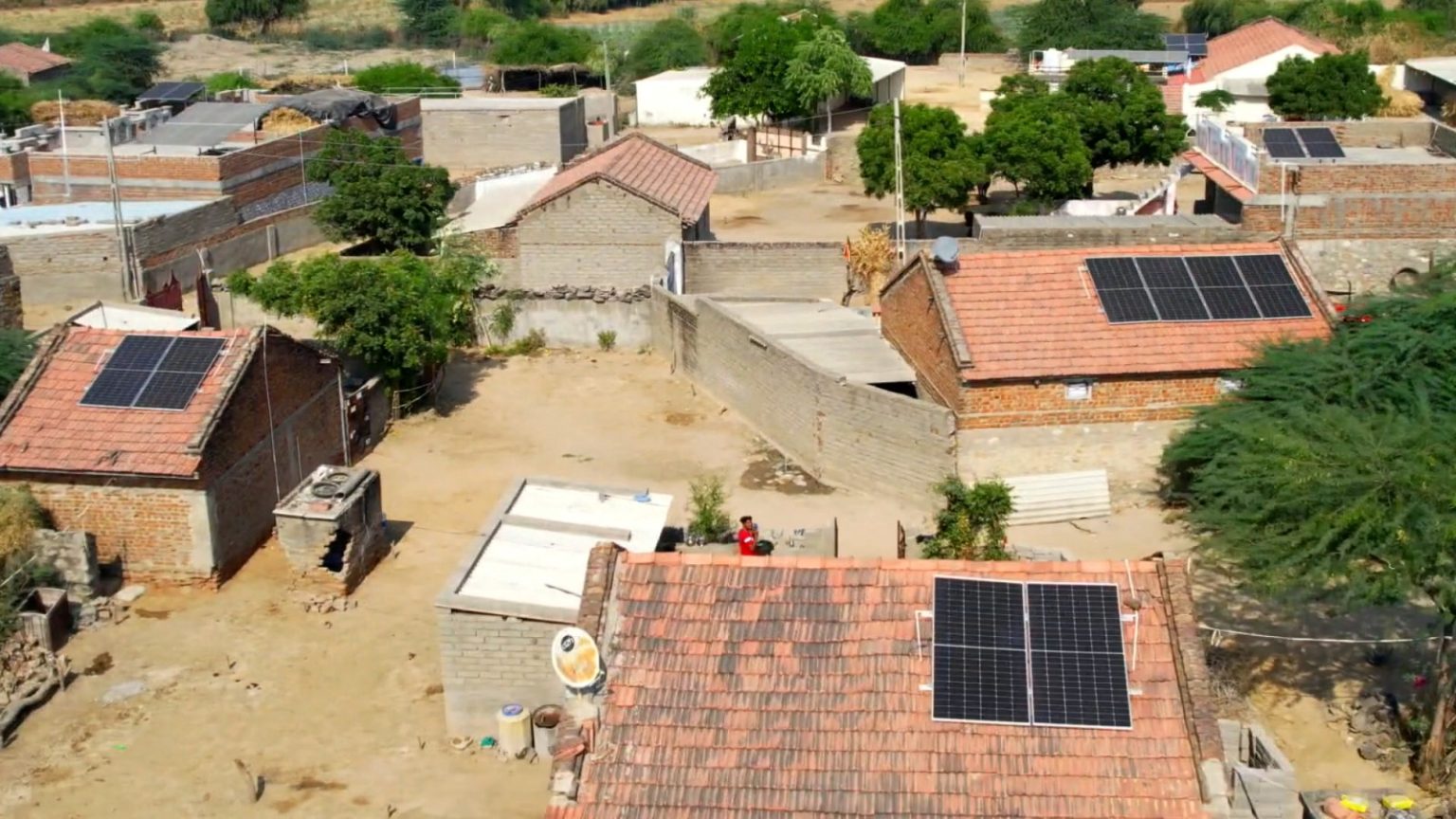
- 20 Dec 2024
In News:
In Gujarat, Masali village in Banaskantha district has become country’s first solar border village.
Key Highlights:
Location:
Masali village is located in Banaskantha district, Gujarat, approximately 40 kilometers from the Pakistan border. The village, with a population of around 800 people, has recently achieved a significant milestone by becoming India’s first fully solar-powered border village.
Solarization Initiative:
Under the PM Suryaghar Yojana, the village has installed solar rooftops on 119 houses. These solar installations collectively generate over 225 kilowatts of electricity, which is more than sufficient to meet the village’s energy needs. This initiative marks a step forward in solarizing border areas of India, promoting sustainability and reducing dependency on conventional energy sources.
Significance of the Initiative:
- India's First Solar-Powered Border Village: Masali village is the first of its kind in India, making it a model for other border regions to adopt renewable energy solutions.
- Promotes Renewable Energy: The transition to solar power encourages sustainability, reduces dependence on traditional fossil fuels, and supports India's renewable energy goals.
- Part of the Border Development Project: Masali is part of a broader government plan that aims to solarize 11 villages in Vav taluka and 6 villages in Suigam taluka, strengthening energy access in these strategically vital areas.
- Energy Security: By harnessing solar energy, the village enhances its energy reliability and self-sufficiency, especially in remote areas with limited access to the national grid.
PM Suryaghar Yojana: Launched in 2024, the PM Suryaghar Yojana aims to provide free electricity to eligible Indian households by subsidizing the installation of rooftop solar panels. Key features of the scheme include:
- A subsidy covering up to 40% of the installation cost of solar panels.
- Eligible families receive 300 free electricity units per month, saving up to Rs. 18,000 annually.
- The scheme is expected to save the government approximately Rs. 75,000 crore annually on electricity costs.
- It encourages the use of renewable energy, lowers carbon emissions, and reduces the electricity expenses for the government.
Eligibility for the Scheme:
- Indian citizens who own a house with a suitable roof for installing solar panels.
- Households must have a valid electricity connection and should not have received any prior subsidy for solar panels.
Broader Implications:
The successful solarization of Masali village is not just an energy achievement but also a significant step toward promoting renewable energy usage, enhancing energy security, and fostering sustainable development in India’s border regions. It is expected that other regions in Gujarat and across the country will follow this example, improving both local living conditions and national energy resilience.
Reimposition of Protected Area Permit (PAP) in Manipur, Mizoram, and Nagaland
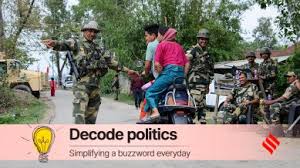
- 20 Dec 2024
In News:
The Ministry of Home Affairs (MHA) of the Government of India has recently reinstated the Protected Area Regime (PAR) for the states of Manipur, Mizoram, and Nagaland, which are strategically located along the international border with Myanmar. This move comes amid growing security concerns, particularly the influx of migrants from Myanmar, which has been cited as a significant factor in the ongoing conflicts in the region.
What is Protected Area Permit (PAP)?
A Protected Area Permit (PAP) is a special permission required for foreign nationals to visit certain areas of India deemed sensitive due to their proximity to international borders or other security-related concerns. The regulations governing the PAP are laid down under the Foreigners (Protected Areas) Order, 1958, which restricts the entry of foreigners to designated regions within India.
Purpose of PAP:
The PAP regime serves multiple critical objectives:
- National Security: It ensures the monitoring and regulation of foreign nationals in sensitive border areas.
- Preservation of Local Communities: The regime safeguards indigenous populations and their unique cultural heritage.
- Environmental Conservation: The permit helps minimize ecological disturbances in fragile regions, ensuring sustainable tourism and development.
Key Features of PAP Regime:
- Eligibility: All foreign nationals, excluding Bhutanese citizens, must obtain a PAP to enter these designated areas. The permit can be granted for specific regions, routes, and time periods.
- Validity: The PAP is typically valid for 10 days with the possibility of extension.
- Restricted Areas: Certain foreign nationals, particularly those from Afghanistan, China, and Pakistan, require prior approval from the MHA to enter these regions.
- Tourism and Other Permits: While foreign nationals can visit these regions for tourism purposes under the PAP, non-touristic visits require special permission from the MHA.
- Registration: Foreigners must register with the Foreigners Registration Officer (FRO) within 24 hours of arrival in the protected area.
Historical Context and Reimposition:
The PAP regime was lifted for Manipur, Mizoram, and Nagaland in 2011, as part of efforts to boost tourism in the region. However, due to rising security concerns related to illegal immigration and ethnic tensions, the MHA reimposed the PAP in 2025. The government’s move aligns with its broader national security strategy to better control foreign movements in sensitive border regions, particularly those with Myanmar, where the Free Movement Regime (FMR) had previously allowed easier cross-border travel.
Background on Security Concerns:
The influx of individuals from Myanmar, particularly members of the Chin community, which shares ethnic ties with the Kuki-Zomi communities in India, has been a source of tension. The Manipur government has repeatedly emphasized that uncontrolled migration has contributed to the unrest in the state. Additionally, the decision to end the FMR between India and Myanmar has further intensified the debate over border security and migration.
Impact on Tourism and Local Communities:
While the reimposition of the PAP is seen as a measure to strengthen security, it has raised concerns in states like Mizoram and Nagaland, which have been actively promoting tourism. For example, Nagaland’s Hornbill Festival recently attracted over 200,000 visitors, including foreign nationals. The reintroduced restrictions may dampen tourism in these states, which were previously exempt from the PAP to encourage foreign visits.
Key Legal Provisions Under the PAP Regime:
- Foreigners (Protected Areas) Order, 1958: This order mandates the requirement of a PAP for foreigners visiting areas close to international borders.
- Foreigners (Restricted Areas) Order, 1963: This order covers areas that require a Restricted Area Permit (RAP) for foreign nationals, such as the Andaman and Nicobar Islands.
States Affected by the PAP Regime:
The PAP regime affects regions close to India’s international borders, including the entire states of Arunachal Pradesh, Sikkim, Manipur, Mizoram, Nagaland, and parts of Himachal Pradesh, Jammu & Kashmir, Rajasthan, and Uttarakhand.
Dark Comets

- 20 Dec 2024
In News:
Dark comets are a newly identified class of celestial objects that challenge our traditional understanding of comets and asteroids. Unlike regular comets, these objects exhibit characteristics that blur the lines between comets and asteroids, leading astronomers to closely study their nature, origin, and significance.
Discovery and Background
The first hint of dark comets appeared in 2016, when asteroid 2003 RM exhibited strange orbital deviations that suggested it might be a comet in disguise. NASA further fueled this interest in 2017 when it discovered ‘Oumuamua, an interstellar object that entered our Solar System. Though initially classified as an asteroid, its erratic motion and lack of a visible tail led scientists to consider it a dark comet. Since then, several more objects with similar characteristics have been discovered, and astronomers now identify these objects as a new class—dark comets.
Characteristics of Dark Comets
- Appearance: Dark comets do not exhibit the brilliant, glowing tails typically associated with comets. Instead, they resemble asteroids, appearing as faint points of light in space. Unlike bright comets, they do not have a visible coma (a cloud of gas and dust) or a tail, making them much harder to detect.
- Size: Dark comets are typically small, ranging from a few meters to a few hundred meters in diameter. Due to their small size, there is less surface area for material to escape, preventing the formation of the iconic tails seen in traditional comets.
- Orbital Path: These objects follow elongated, elliptical orbits. While some of them travel close to the Sun, they can also venture to the outer reaches of the Solar System, far beyond Pluto, and even into the Oort Cloud—the distant region where long-period comets are believed to originate.
- Spin and Gas Dispersion: Dark comets often rotate rapidly, dispersing gas and dust in all directions. This rapid spin contributes to their invisibility, as the gas and dust are scattered evenly, making it more difficult for astronomers to detect their presence.
- Composition: The composition of dark comets may also play a role in their lack of visibility. Over time, the materials that form the bright tails of comets may be depleted, especially for older objects. As a result, dark comets may not release enough gas to produce a visible coma or tail.
Types of Dark Comets
There are two main categories of dark comets:
- Inner Dark Comets: These are smaller objects that reside closer to the Sun and typically travel in nearly circular orbits. They are often just a few meters in size, with less surface area for gas and dust to escape.
- Outer Dark Comets: These larger objects, measuring over 100 meters in diameter, travel in highly eccentric orbits, similar to Jupiter-family comets. These dark comets follow elliptical paths that bring them close to the Sun and then send them back toward the outer reaches of the Solar System.
Importance of Studying Dark Comets
Dark comets may hold critical clues about the early Solar System and the formation of Earth. Studying these objects can provide insights into the origins of water on Earth, as well as the ingredients necessary for life. Their unique composition and orbits also offer potential for understanding the processes that led to the formation of planets.
Recent Discoveries and Advancements
Astronomers recently discovered 10 new dark comets with the help of the Dark Energy Camera (DECam) on a large telescope in Chile. The DECam, designed to study distant galaxies and stars, has enabled researchers to detect these faint objects by analyzing images of the night sky. Further progress is expected with the upcoming Vera C. Rubin Observatory, which will feature the largest digital camera ever built. This new instrument will allow astronomers to capture more detailed images of the night sky and detect fainter objects, potentially doubling or even tripling the number of known dark comets in the next decade.
Key Facts:
- Dark comets lack the characteristic glowing tails of typical comets, instead resembling asteroids.
- They exhibit erratic motions and follow elliptical orbits, often extending beyond Pluto and into the Oort Cloud.
- They are typically small (a few meters to hundreds of meters wide) and spin rapidly.
- The first dark comet was identified in 2016, with more discoveries made in the years since.
- The Dark Energy Camera (DECam) in Chile has been instrumental in detecting these elusive objects, with a new Vera C. Rubin Observatory expected to further enhance detection in the future.
- Studies suggest that between 0.5% and 60% of Near-Earth Objects (NEOs) could be dark comets, many originating from the asteroid belt between Mars and Jupiter.
India's First-Ever Ganges River Dolphin Tagging in Assam

- 19 Dec 2024
In News:
India conducts the first-ever satellite tagging of the Ganges River Dolphin (Platanista gangetica) in Assam, a key step in wildlife conservation.
Key Highlights:
Objective of Tagging: The tagging aims to understand:
- Migratory patterns
- Range and distribution
- Habitat utilization, especially in fragmented river systems.
Key Participants:
- Ministry of Environment, Forest and Climate Change (MoEFCC)
- Wildlife Institute of India (WII)
- Assam Forest Department
- Aaranyak (NGO)
- Funded by the National CAMPA Authority.
Significance of the Tagging:
- Technology Used: Lightweight satellite tags compatible with Argos systems were employed, minimizing interference with the dolphin’s movement despite its limited surfacing time (5-30 seconds).
- Insight into Dolphin Ecology: Helps fill knowledge gaps regarding habitat needs and seasonal migration, especially in disturbed river ecosystems.
Ganges River Dolphin – India's National Aquatic Animal:
- Endemic to India with around 90% of the population in India.
- Known for being nearly blind and using echolocation for navigation and hunting.
- Plays a crucial role as an apex predator and indicator species for river ecosystem health.
Project Dolphin:
- Launched by PM Narendra Modi in 2020, modeled after Project Tiger.
- Focuses on conservation of riverine and marine dolphins.
- A 10-year initiative funded by MoEFCC to safeguard dolphin populations and address ecosystem challenges.
Conservation Status:
- IUCN: Endangered.
- Protection: Included in Schedule I of the Wildlife Protection Act (1972) and CITES Appendix I.
- Major Threats: Habitat degradation, pollution, bycatch, and water abstraction, compounded by damming and sand mining.
Broader Impact:
- The tagging initiative contributes to evidence-based conservation strategies for Ganges River Dolphins.
- Will aid in the development of a comprehensive conservation action plan for the species.
- Expands the understanding of critical habitats within river ecosystems, benefiting both biodiversity and the communities dependent on these resources.
National Wildlife Health Policy (NWHP)
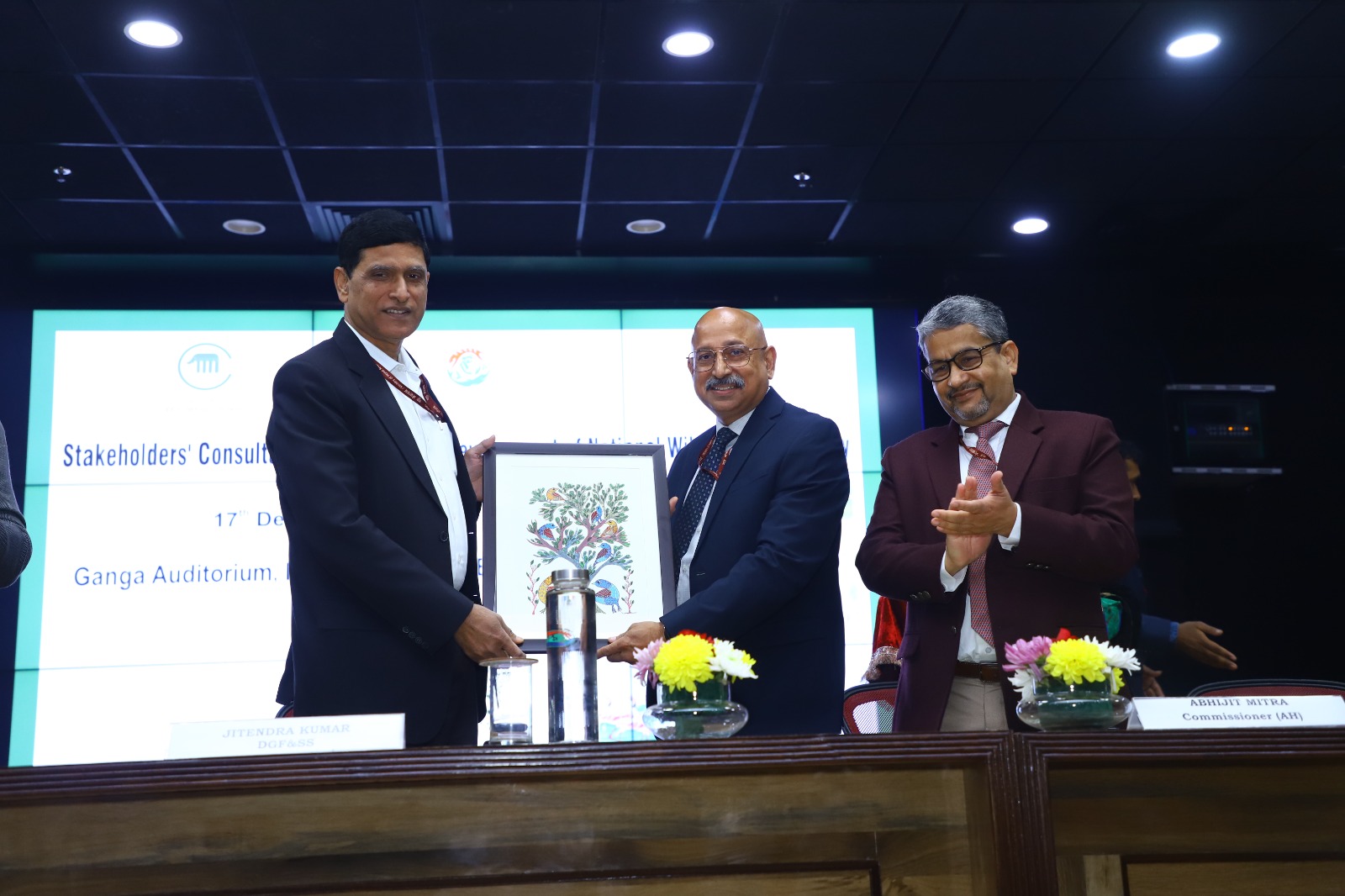
- 19 Dec 2024
In News:
The Central Zoo Authority, under the aegis of the Ministry of Environment Forest and Climate Change (MoEF&CC) has taken up the development of the ‘National Wildlife Health Policy in consultative workshop held in Indira Prayavaran Bhawan, New Delhi.
Key Highlights:
- Organized by: Central Zoo Authority (CZA), under the Ministry of Environment, Forest and Climate Change (MoEF&CC).
- Event: Consultative workshop held at Indira Prayavaran Bhawan, New Delhi, on the development of the National Wildlife Health Policy (NWHP).
- Purpose: To address health threats to wildlife and integrate wildlife health management with public and animal health.
Goals of the National Wildlife Health Policy (NWHP):
- One Health Approach: Integrates human, animal, and environmental health, recognizing their interdependence.
- Focus Areas:
- Prevent and control zoonotic diseases.
- Improve disease surveillance and early detection, especially in protected areas.
- Promote biosecurity measures and epidemic preparedness.
- Enhance research and development in wildlife health management.
- Advocate for community awareness on wildlife health and conservation.
Key Features of the Policy:
- Wildlife Health Management Unit (WHMU): Proposed unit to oversee the policy's implementation.
- Collaboration: Involves coordination with various stakeholders including government ministries, NGOs, academic institutions, and veterinary universities.
- Disease Surveillance: Establish protocols for monitoring and controlling wildlife diseases, especially in protected areas.
- Capacity Building: Training programs for professionals involved in wildlife conservation and health management.
- Biosecurity Protocols: Strengthen measures to reduce disease transmission risks.
Supporting Institutions:
- GISE Hub, IIT Bombay and Office of the Principal Scientific Adviser to the Government of India are providing support in policy development.
Challenges Addressed:
- Wildlife in India faces various health challenges including:
- Infectious diseases (e.g., Canine Distemper Virus).
- Habitat loss and climate change impacts.
- Illegal wildlife trade and other anthropogenic pressures.
- India has over 91,000 wildlife species and more than 1,000 protected areas, making comprehensive health management crucial.
Expected Outcomes:
- Comprehensive Framework: A science-based framework for wildlife health, integrating ecological, human, and animal health.
- Disease Outbreak Response: Structured mechanisms for disease management, surveillance, and legal frameworks.
- Public Health Integration: Safeguard wildlife health, which directly impacts balanced ecosystems and biodiversity.
Policy’s Strategic Alignment:
- National Wildlife Action Plan (2017-31): The policy complements the action plan’s 103 conservation actions and 250 projects, including disease surveillance protocols in tiger reserves and other protected areas.
- Research & Development: Encourages the development of strategies to manage wildlife health and prevent disease outbreaks.
Eastern Maritime Corridor (EMC)
- 19 Dec 2024
In News:
In mid-2024, India surpassed China as the largest importer of Russian oil. This milestone has been accompanied by the operationalization of a new maritime route, the Eastern Maritime Corridor (EMC), which connects Chennai in India to Vladivostok in Russia. The new sea route is significantly reducing both shipping times and costs, facilitating smoother commodity trade between the two countries, particularly crude oil shipments.
The Eastern Maritime Corridor (EMC)
The EMC, covering a distance of about 5,600 nautical miles, has reduced the shipping time between India and Russia’s Far East by up to 16 days. The Chennai-Vladivostok route now takes just 24 days, compared to over 40 days using the traditional St. Petersburg-Mumbai route. This reduction in transit time makes it a highly efficient route for transporting goods such as crude oil, coal, LNG, fertilizers, and other commodities. Additionally, this new corridor supports India’s maritime sector and aligns with the country’s broader vision for maritime growth and regional strategic engagement.
Key Features of the EMC:
- Efficiency and Cost Savings: The route cuts shipping time and distance, reducing costs associated with longer transit periods. For example, a ship traveling between Vladivostok and Chennai now takes only about 12 days at cruising speed, compared to the traditional route's 40+ days.
- Strategic Importance: Vladivostok is Russia’s largest Pacific port, and the corridor strengthens India's strategic presence in the region. This maritime route bypasses traditional chokepoints like the Suez Canal, offering faster, more direct access to key markets.
- Diversification of Trade: Besides crude oil, the EMC facilitates the transportation of coal, LNG, fertilizers, and metals, diversifying India's trade portfolio with Russia. It also helps maintain supply chains for essential goods.
- Boosting India’s Maritime Sector: The corridor supports India’s Maritime Vision 2030, which aims to enhance the efficiency and reach of India's maritime trade, a sector responsible for over 70% of the country’s trade value.
Economic and Strategic Impact:
- The new Eastern Maritime Corridor is particularly significant for India’s energy needs. As the world’s third-largest consumer of crude oil, India imports over 85% of its crude oil demand. The growing imports of Russian crude, especially the Urals grade, are crucial for securing India’s energy future. Additionally, Russia’s competitive pricing on crude, coupled with the savings on shipping costs through the EMC, makes Russian oil even more attractive.
- Beyond the economic benefits, the EMC also supports India’s broader strategic goals, including strengthening ties with Russia, a key partner in defense, nuclear cooperation, and regional geopolitics. The closer maritime links also help counterbalance China's growing dominance in the Pacific region, aligning with India's Act Far East Policy and enhancing trade and diplomatic engagement with East Asia and Russia.
Other Key Maritime Corridors Relevant to India:
- International North-South Transport Corridor (INSTC): A 7,200 km multimodal route linking the Indian Ocean with Russia, offering alternative trade routes to Europe and Central Asia.
- India-Middle East-Europe Economic Corridor (IMEC): A recent project announced at the G20 Summit, which connects India, the Middle East, and Europe via rail, road, and maritime links, fostering greater regional integration.
- Northern Sea Route (NSR): A 5,600 km Arctic route offering shorter transit times between the Barents and Kara Seas and the Bering Strait, gaining importance due to growing imports of Russian energy resources.
In conclusion, the Eastern Maritime Corridor is reshaping India-Russia trade dynamics, boosting economic ties and strategic cooperation between the two nations. By facilitating faster and cheaper transportation, the EMC is not only beneficial for trade in crude oil but also for a range of other commodities, positioning India as a key player in the evolving global trade network.
One Nation, One Election

- 19 Dec 2024
In News:
The government has recently taken steps to implement "One Nation, One Election" by presenting two Constitution Amendment Bills in the Lok Sabha: the One Nation One Election – The Constitution 129th Amendment Bill 2024 and the Union Territories Laws Amendment Bill 2024.
Introduction to the Concept:
- Objective: Proposes synchronizing elections for Lok Sabha (national) and State Legislative Assemblies to be held on the same day.
- Purpose: Aims to reduce costs, minimize logistical challenges, and address governance disruptions caused by frequent elections.
- 2024 Report: The High-Level Committee Report on Simultaneous Elections, released in December 2024, outlines a roadmap for implementing this reform.
Historical Background:
- Previous Practice: From 1951 to 1967, Lok Sabha and State Assembly elections were conducted together.
- Disruptions: The practice was interrupted due to premature dissolutions and emergencies, leading to staggered elections across India.
High-Level Committee on Simultaneous Elections:
- Committee Formation: Headed by former President Ram Nath Kovind, formed on 2nd September 2023.
- Public Response: Over 21,500 responses, with 80% in favor.
- Political Party Responses: 32 political parties supported the idea, while 15 raised concerns about regional party marginalization.
- Expert Consultations: Majority of experts supported the reform, emphasizing resource optimization and reduced disruptions.
Committee Recommendations:
- Constitutional Amendments: Proposals to amend Articles 82A and 324A to enable simultaneous elections.
- Two-Phase Implementation:
- Phase 1: Synchronize elections for Lok Sabha and State Legislative Assemblies.
- Phase 2: Include Municipalities and Panchayats within 100 days.
- Single Electoral Roll: Creation of a unified electoral roll and EPIC for all levels of elections, reducing duplication and errors.
Rationale for Simultaneous Elections:
- Governance Consistency: Reduces focus on election preparation, allowing more attention to developmental work.
- Prevents Policy Paralysis: Mitigates disruptions caused by the Model Code of Conduct (MCC) during frequent elections.
- Resource Optimization: Reduces the need for personnel and resources for election duties, allowing better allocation to governance tasks.
- Preserves Regional Party Relevance: Local issues remain prioritized, ensuring regional parties' concerns are heard.
- Equitable Political Opportunities: Encourages diversification and inclusivity within political parties.
- Financial Benefits: Reduces the financial burden of conducting multiple elections, enhancing economic efficiency.
Conclusion:
- The concept of "One Nation, One Election" is a significant reform aimed at streamlining India's electoral processes. With broad public and political support, it promises improved governance, cost savings, and better resource management in the future.
Wroughton’s Free-Tailed Bat
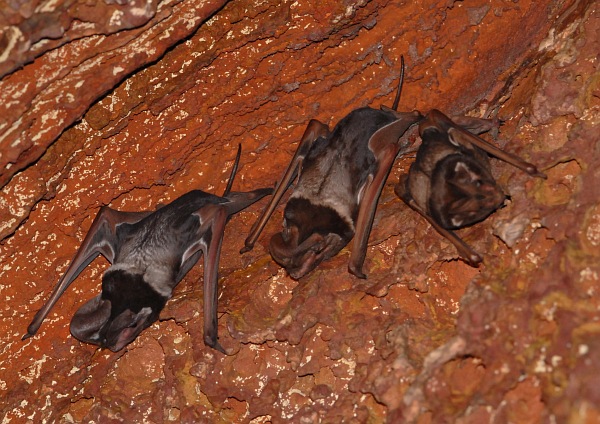
- 19 Dec 2024
In News:
Wroughton’s free-tailed bat, a highly rare species of molossus bat, has been spotted at the Delhi Development Authority (DDA)’s Yamuna Biodiversity Park, marking a unique sighting.
Key Highlights:
- Species Overview: Wroughton’s free-tailed bat (Otomops wroughtoni) is a rare species of molossus bat, notable for its powerful flight and ecological importance in controlling insect populations and assisting in pollination.
- Conservation Status:
- IUCN: Listed as "Data Deficient".
- Protection: Listed under Schedule I of the Wildlife (Protection) Act, 1972.
- Geographical Distribution:
- Primarily found in the Western Ghats, with a single known breeding colony.
- Small colonies in Jaintia Hills, Meghalaya, and a solitary individual sighted in Cambodia.
- Physical Characteristics:
- Large in size, with huge ears extending beyond the muzzle.
- Bicoloured velvet fur.
- Noted for powerful flying capabilities, enabling long-distance foraging.
- Ecological Role:
- Regulates insect populations.
- Known for assisting in pollination.
- Habitat:
- Roosts in caves, or dark, damp, and slightly warm places, typically in moderate-sized colonies.
- Significance of the Delhi Sighting:
- The sighting at Yamuna Biodiversity Park is significant for Delhi, marking a rare occurrence in the region.
- Delhi's bat species: The city is home to about 14 bat species, with four species, including the Indian false vampire and Egyptian free-tailed bat, considered locally extinct.
- Conservation Efforts:
- Two decades of ecological restoration have created specialized niches in the area, aiding species rewilding and ecological balance.
- The Aravalli Biodiversity Park in Gurugram now serves as the only known roosting site for the Blyth’s horseshoe bat in Delhi NCR.
- Additional Notes:
- Wroughton’s free-tailed bat was considered critically endangered until 2000 due to its limited known population. However, the discovery of populations in other regions has led to a reclassification to "Data Deficient".
- Despite being discovered over a century ago, much about the bat's feeding ecology remains unknown.
Global Multidimensional Poverty Index (MPI) Report 2024

- 18 Dec 2024
In News:
The Global Multidimensional Poverty Index (MPI) Report 2024 was released by the United Nations Development Programme (UNDP) and the Oxford Poverty and Human Development Initiative (OPHI). The report focuses on the theme “Poverty Amid Conflict”, examining the interplay between violent conflict and multidimensional poverty.
Key Findings:
- Global Poverty Levels:
- 1.1 billion people (~18% of the global population) live in acute multidimensional poverty across 112 countries.
- India has the largest number of people living in multidimensional poverty, with 234 million people.
- Multidimensional Poverty Indicators:
- The MPI assesses poverty across three key dimensions:
- Health: Child mortality, malnutrition.
- Education: Years of schooling, school attendance.
- Living Standards: Access to clean water, sanitation, electricity, cooking fuel, housing quality, and ownership of basic assets.
- A person is considered MPI poor if they are deprived in one-third or more of the weighted indicators.
- The MPI assesses poverty across three key dimensions:
- Impact of Conflict:
- Countries experiencing violent conflict exhibit higher deprivations across all 10 MPI indicators when compared to non-conflict nations.
- 40% (455 million people) of those living in poverty are in conflict-affected regions. These regions include active war zones, fragile states, and areas with low peace.
- Child Poverty:
- 584 million children (27.9% of all children globally) are living in extreme poverty, highlighting the disproportionate impact on the younger population.
- In contrast, 13.5% of adults are living in extreme poverty.
- Regional Distribution:
- The regions with the highest poverty rates are Sub-Saharan Africa and South Asia, which together account for 83.2% of the global poor.
- Rural Poverty: A majority of the poor (83.7%, or 962 million people) live in rural areas, with 70.7% of the poor concentrated in rural parts of Sub-Saharan Africa and South Asia.
- Countries with the Highest Poverty:
- India: 234 million people.
- Pakistan: 93 million people.
- Ethiopia: 86 million people.
- Nigeria: 74 million people.
- Democratic Republic of the Congo: 66 million people. These five countries account for 48.1% of the global poor.
- Poverty Amid Conflict:
- The report underscores that 2023 witnessed the highest number of conflicts since World War II, leading to the displacement of 117 million people due to violent conflicts and other factors like natural disasters.
- Conflict zones continue to experience higher poverty, as nearly 40% of the world's poorest people live in these areas.
India's Poverty Situation:
- India's Poor Performance:
- India has 234 million people living in multidimensional poverty, making it the country with the largest share of the global poor.
- Regional Disparities: Poverty rates in rural areas remain high due to poor infrastructure, limited economic opportunities, and underdeveloped services outside of agriculture.
- Poor Nutrition: Malnutrition, especially among children, is a significant concern.
- Education: The quality of education remains subpar, especially in government-run schools, affecting learning outcomes.
- Water and Sanitation: Inadequate access to clean drinking water and sanitation is prevalent, especially in rural areas.
- Economic Setbacks: The COVID-19 pandemic worsened the economic situation, leading to job losses and reduced incomes.
Government Initiatives for Poverty Alleviation:
- National Food Security Act (NFSA): Provides subsidized food grains to 67% of India's population, targeting rural areas (75%) and urban areas (50%).
- Pradhan Mantri Ujjwala Yojana (PMUY): Aims to provide LPG connections to women from Below Poverty Line (BPL) families.
- Ayushman Bharat: Health insurance coverage up to ?5 lakh per family, designed to protect against catastrophic healthcare costs.
- POSHAN Abhiyaan: Focuses on reducing malnutrition, particularly among children, adolescent girls, pregnant women, and lactating mothers.
- Right to Education Act (RTE): Guarantees free and compulsory education for children between 6 and 14 years.
- Swachh Bharat Mission: Works to ensure universal sanitation coverage, including the construction of toilets and promoting cleanliness.
Schengen Zone Membership
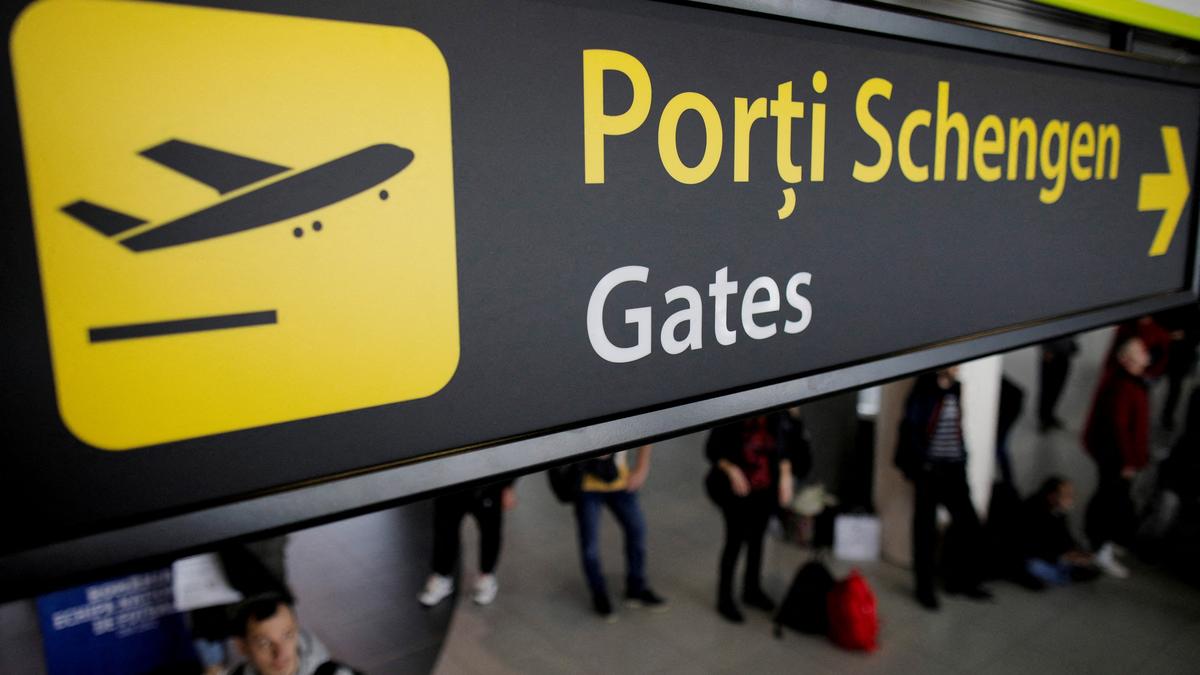
- 18 Dec 2024
In News:
Recently, the European Union (EU) cleared Bulgaria and Romania for full membership in the Schengen Zone, effective January 1, 2025. This marks the end of a 13-year wait for these Eastern European nations, which joined the EU in 2007.
Key Highlights:
- Schengen Integration: Until now, Bulgaria and Romania were partially integrated into the Schengen Zone, with air and sea travel without border checks since March 2024. However, land border controls were still in place due to Austria's objections, mainly due to concerns over migration and border security.
- Austria's Shift: Austria had blocked full entry for years but finally lifted its veto on December 9, 2024, after a border protection package was agreed upon. This package includes joint border guard deployment at the Bulgarian-Turkish border and temporary land border controls for six months.
Schengen Zone Details:
- What is the Schengen Zone?
- Created by the Schengen Agreement (1985) and the Schengen Convention (1990), it is the world’s largest area without internal border controls, allowing free movement across most EU countries and some non-EU countries. It currently includes 29 countries (25 EU states and 4 non-EU countries: Iceland, Liechtenstein, Norway, and Switzerland).
- Key Features:
- Free Movement: Over 425 million people can travel freely within the zone without border checks.
- Uniform Visa Policy: Short-term stays of up to 90 days are allowed for tourists and business travelers from outside the Schengen Area.
- Cross-Border Cooperation: The Schengen Information System (SIS) facilitates security and border management by sharing critical data between countries.
- Temporary Border Controls: Countries can temporarily reintroduce border controls for security reasons, after notifying other member states and the European Commission.
Bulgaria and Romania
- Bulgaria:
- Capital: Sofia
- Location: Southeastern Europe, bordered by the Black Sea, Romania, Turkey, Greece, North Macedonia, and Serbia.
- Political System: Parliamentary Republic
- Romania:
- Capital: Bucharest
- Location: Bounded by Ukraine, Moldova, Black Sea, Bulgaria, Serbia, and Hungary.
- Political System: Semi-Presidential Republic
Implications of Full Schengen Membership:
- Security and Unity: Romania and Bulgaria's full integration into the Schengen Zone is seen as a boost to both EU security and unity. It solidifies the EU's commitment to free movement while enhancing border security across Europe.
- Impact on Migration: With Bulgaria and Romania’s full membership, the EU’s border management system will be more integrated, helping to address ongoing migration challenges.
World Bank Report on Poverty in India
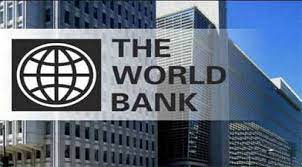
- 18 Dec 2024
In News:
The World Bank has set a clear mission: ending extreme poverty and boosting shared prosperity on a livable planet. This new edition of the biennial series, previously titled Poverty and Shared Prosperity, assesses the three components of the mission and emphasizes that reducing poverty and increasing shared prosperity must be achieved without high costs to the environment.
Extreme Poverty in India:
- Current Poverty Status (2024):
- 129 million Indians are living in extreme poverty, defined as earning less than $2.15 (?181) per day.
- This marks a significant improvement from 431 million in 1990, demonstrating progress in poverty alleviation.
- Poverty Trends:
- In 2021, there was a reduction of 38 million people in extreme poverty, bringing the total to 167.49 million.
- However, higher poverty standards (set at $6.85 (?576) per day) now show more Indians below the poverty line than in 1990, mainly due to population growth.
- Survey Methodology:
- The 2022-23 Household Consumption and Expenditure Survey (HCES) in India used the Modified Mixed Reference Period (MMRP) method to improve data accuracy.
- The report suggests the need for careful analysis of the survey data, which may impact future poverty estimates.
Global Poverty Trends:
- Slowdown in Poverty Reduction:
- Global poverty reduction has slowed considerably, with 700 million people (8.5% of the global population) living in extreme poverty in 2024.
- The slowdown is attributed to factors like low economic growth, the COVID-19 pandemic, and increased fragility.
- Challenges in Achieving Targets:
- The global extreme poverty rate is expected to be 7.3% in 2030, which is double the World Bank's target of 3%.
- At current rates, extreme poverty eradication by 2030 is unlikely. It could take decades to eradicate extreme poverty, and over a century to lift people above the $6.85/day threshold.
- Impact of Polycrisis:
- Polycrisis refers to the confluence of multiple crises—slow growth, climate risks, and increased uncertainty—making global poverty reduction more challenging.
- Global prosperity has also been impacted, with slower income growth, particularly after the pandemic.
India's Role in Global Poverty Reduction:
- Contribution to Global Poverty:
- India’s contribution to global extreme poverty is expected to decline significantly over the next decade. However, even if India eradicates its extreme poverty by 2030, the global extreme poverty rate would only fall from 7.31% to 6.72%, still above the UN SDG target of 3%.
Proposed Pathways for Addressing Poverty:
- Faster and Inclusive Growth:
- Focus on increasing labor productivity, income, and employment to boost economic growth inclusively.
- Climate Resilience:
- Strengthen risk management and mitigation efforts to protect vulnerable populations from climate shocks, ensuring that growth does not worsen environmental degradation.
Global Priorities:
- Low-Income Countries: Prioritize poverty reduction through investments in human, physical, and financial capital to foster growth.
- Middle-Income Countries: Focus on inclusive income growth that reduces vulnerability, and seek synergies such as cutting air pollution alongside poverty reduction.
- High-Income Countries: Accelerate climate mitigation efforts while managing the transition costs involved.
Cyclone Chido
- 18 Dec 2024
In News:
Cyclone Chido makes landfall in Mozambique after leaving trail of destruction in French-administered Mayotte.
About Cyclone Chido:
- Location and Impact:
- Cyclone Chido struck Mayotte, a French overseas territory in the Indian Ocean, in December 2024.
- It is the strongest storm to hit Mayotte in at least 90 years.
- Cyclone Characteristics:
- Wind speeds exceeded 200 km/h (124 mph), with gusts surpassing 225 km/h (140 mph).
- The cyclone caused significant devastation to the region, prompting expressions of condolences from global leaders.
- Cyclone Classification:
- According to the Indian Meteorological Department (IMD), cyclones are classified based on wind speed:
- Depression: 31–49 km/h
- Deep Depression: 50–61 km/h
- Cyclonic Storm: 62–88 km/h
- Severe Cyclonic Storm: 89–117 km/h
- Very Severe Cyclonic Storm: 118–166 km/h
- Extremely Severe Cyclonic Storm: 167–221 km/h
- Super Cyclonic Storm: Above 222 km/h
- Cyclone Chido was classified as a Super Cyclonic Storm, based on its wind speeds exceeding 222 km/h.
- According to the Indian Meteorological Department (IMD), cyclones are classified based on wind speed:
About Mayotte:
- Geography:
- Mayotte is an archipelago in the Mozambique Channel, between Madagascar and the coast of Mozambique.
- It consists of two main islands: Grande Terre (the larger main island) and Petite Terre (the smaller island of Pamandzi).
- Political and Economic Context:
- Mayotte is an overseas department of France, and it is the poorest territory in both France and the European Union.
- France colonized Mayotte in 1843 and annexed the entire Comoros archipelago in 1904.
- A 1974 referendum showed that 95% of Comoros voters favored independence, but 63% of Mayotte's population voted to remain part of France. Subsequently, Grande Comore, Anjouan, and Moheli declared independence in 1975.
- Mayotte remains administratively under French governance.
- Biodiversity:
- Mayotte is renowned for its rich biodiversity, particularly for having one of the world’s largest enclosed lagoons.
Cyclones
- What is a Cyclone?
- A cyclone is a large-scale, rotating system of air that forms around a low-pressure area, bringing violent storms and extreme weather conditions.
- In the Northern Hemisphere, cyclones rotate anticlockwise, while in the Southern Hemisphere, they rotate clockwise due to the Coriolis effect.
- Tropical Cyclone Characteristics:
- Calm Centre (Eye): The cyclone’s center, or "eye," experiences relatively calm weather with low air pressure.
- High Wind Speed: Cyclones generally have average wind speeds around 120 km/h.
- Closed Isobars: Isobars (lines of equal atmospheric pressure) are tightly packed, leading to high wind velocities.
- Formation Over Oceans: Cyclones typically form over warm ocean waters.
- East-to-West Movement: Influenced by trade winds, cyclones usually move from east to west.
- Seasonal Nature: Cyclones occur during specific seasons based on regional climatic conditions.
Kisan Kavach

- 18 Dec 2024
In News:
Scientists develop ‘kisan kavach’ to shield farmers from pesticide sprays.
Key Highlights:
- Purpose: The Kisan Kavach is designed to shield farm labourers from harmful pesticide exposure. Pesticides, often neurotoxins, can be detrimental to health, causing symptoms like dizziness, headaches, vomiting, and even death with high exposure.
- Development:
- Developed by Biotechnology Research and Innovation Council (BRIC-inStem), Bangalore, in collaboration with Sepio Health Pvt. Ltd.
- Launched by Union Minister of State for Science and Technology.
- Fabric Technology:
- The suit uses oxime fabric, which chemically breaks down common pesticides on contact, preventing them from penetrating the skin.
- Mechanism: The fabric works through nucleophilic mediated hydrolysis, deactivating pesticides upon contact and preventing pesticide-induced toxicity and lethality.
- Components of the Kit:
- Consists of a trouser, pullover, and face-cover.
- Washable and reusable: The suit retains its protective properties even after 150 washes, in a wide temperature range, and under UV light exposure.
- Affordability:
- Priced at ?4,000 per kit, with efforts underway to reduce costs through increased production.
- Field Testing and Efficacy:
- Animal studies: Rodent tests showed that animals exposed to pesticides and covered with ordinary cotton cloth died within four days, while those with the activated fabric remained safe.
- Human trials are still pending.
- Health Implications:
- Pesticides are linked to chronic health issues, including cancer, as per studies by the National Institute of Nutrition (Indian Council of Medical Research).
- Global Context:
- In 2020, India used 61,000 tonnes of pesticides, despite producing much more (2,58,130 tonnes in 2022-2023).
- Pesticide-related health issues are a major concern, with 60% of India’s adult workforce engaged in agriculture.
- Impact:
- The suit aims to protect farm labourers from pesticide exposure and promote sustainable agriculture.
- It could help reduce health complications and improve working conditions for farmers, who often lack proper protective gear.
- Future Plans:
- Awareness campaigns will be conducted to inform farmers about this protective technology.
- Efforts are underway to make the kit more affordable as demand increases.
Credit Guarantee Scheme for e-NWR based Pledge Financing (CGS-NPF)
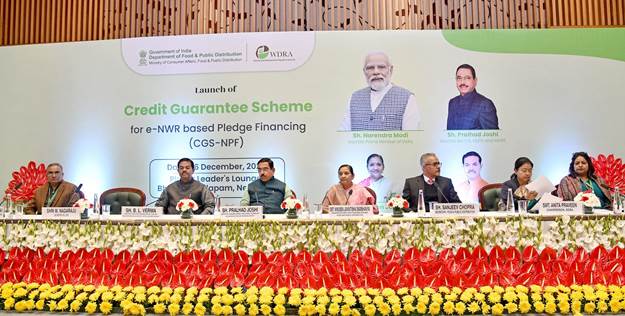
- 17 Dec 2024
In News:
The Credit Guarantee Scheme for e-NWR based Pledge Financing (CGS-NPF), launched by Union Minister Pralhad Joshi aims to support farmers by facilitating post-harvest finance using electronic negotiable warehouse receipts (e-NWRs). This initiative is part of the government’s efforts to minimize distress selling and ensure financial security for farmers, particularly small and marginalized ones.
Key Features of the Scheme:
- Total Corpus: ?1,000 crore for post-harvest finance.
- Loan Coverage:
- Agricultural purposes: Loans up to ?75 lakh.
- Non-agricultural purposes: Loans up to ?200 lakh.
- Eligible Borrowers: Small and marginal farmers, women, SC/ST/PwD farmers, MSMEs, traders, Farmer Producer Organizations (FPOs), and farmer cooperatives.
- Eligible Institutions: All scheduled and cooperative banks.
- Guarantee Coverage:
- Small and marginal farmers/Women/SC/ST/PwD: 85% for loans up to ?3 lakh, and 80% for loans between ?3 lakh to ?75 lakh.
- Other borrowers: 75% coverage for loans up to ?200 lakh.
- Risks Covered: Both credit risk and warehouseman risk.
- Guarantee Fees: 0.4% per annum for farmers, and 1% per annum for non-farmers.
Objectives:
- Minimize distress selling: By providing easy access to loans post-harvest, the scheme helps farmers avoid selling produce at low prices due to cash crunches.
- Instill confidence in banks: The scheme provides a guarantee cover to lenders, encouraging them to offer loans against e-NWRs.
- Encourage warehouse registration: The scheme emphasizes the need for more warehouses, particularly those closer to farmland, to improve accessibility for farmers.
About e-NWRs:
- e-NWRs are digital versions of traditional warehouse receipts that enable farmers to pledge stored commodities as collateral for loans.
- These receipts are governed by the Warehousing (Development and Regulation) Act of 2007, and since 2017, e-NWRs have been mandated for use in transactions related to agricultural produce stored in WDRA-accredited warehouses.
Expected Impact:
- This scheme is expected to boost post-harvest lending, with a target of increasing lending to ?5.5 lakh crore in the next decade.
- It will improve farmers’ income, reduce dependence on informal credit sources, and foster better financial inclusion.
- Additionally, it will create a more reliable supply chain for agricultural produce, enhancing food security.
Future Targets:
- Increase the number of registered warehouses under the WDRA to 40,000 in the next 1–2 years.
- Use platforms like e-Kisan Upaj Nidhi to streamline the lending process and avoid repeated visits to banks.
How La Niña Affects India's Climate?
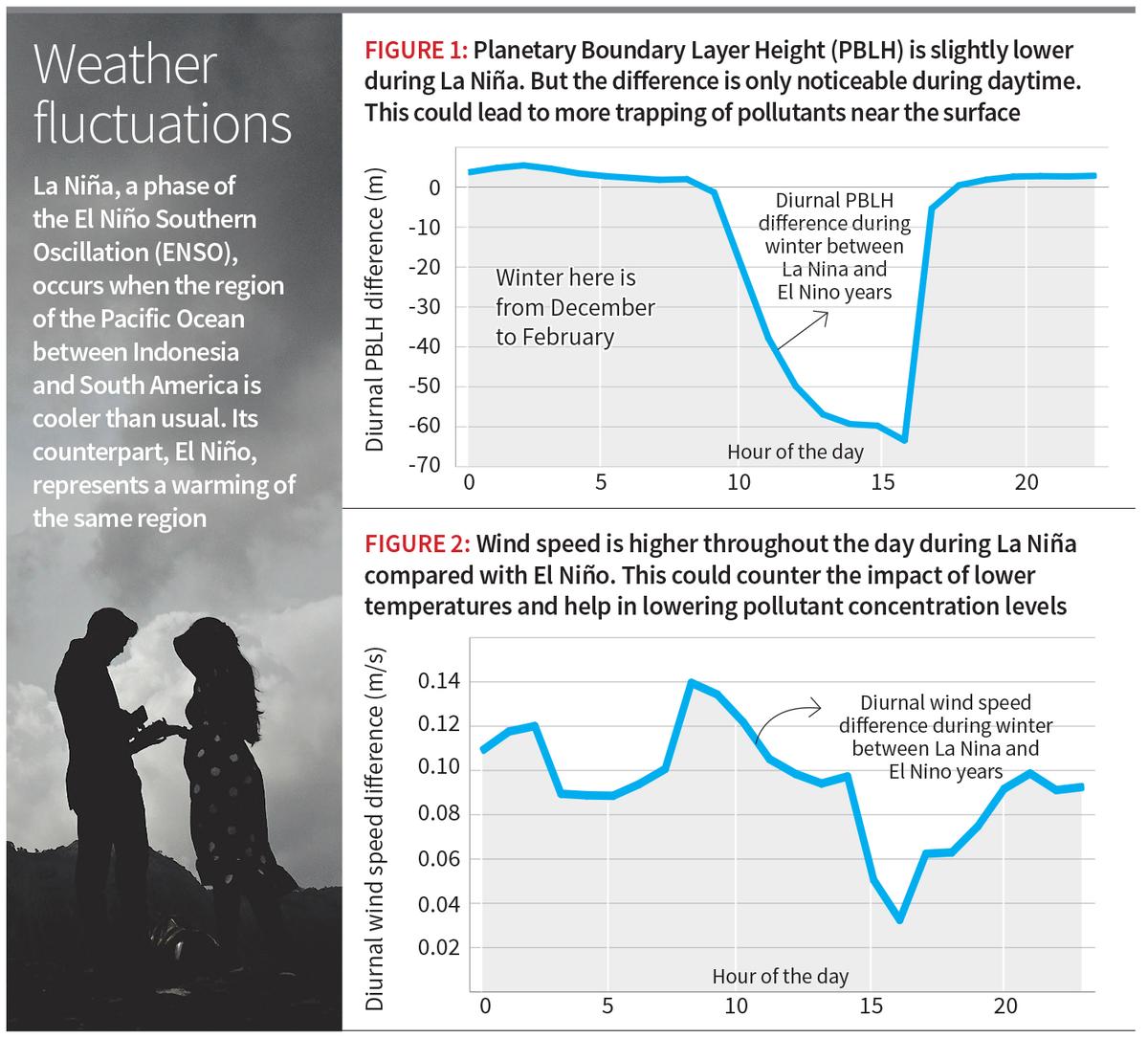
- 28 Dec 2024
In News:
La Niña, a phase of the El Niño Southern Oscillation (ENSO), occurs when the Pacific Ocean region between Indonesia and South America is cooler than usual. This phenomenon influences global weather patterns, including those in India. Here’s how La Niña specifically affects India’s climate:
Monsoon Rainfall:
- La Niña typically results in normal to above-normal rainfall during the monsoon season in India. This is due to the cooling of sea surface temperatures in the central Pacific, which affects atmospheric circulation and strengthens the monsoon winds.
- In contrast, El Niño usually brings below-average rainfall and droughts to India, leading to agricultural stress.
- Recent La Niña years (2020-2022) saw above-normal monsoon rains, which benefited agricultural productivity, while the El Niño year of 2023 resulted in below-normal rains, impacting water availability and agriculture.
Winter Temperatures:
- During La Niña, winter temperatures in India are generally colder in the north, with cooler nights but relatively warmer days compared to El Niño winters. The planetary boundary layer height (PBLH) tends to be lower, trapping pollutants close to the surface. However, higher wind speeds during La Niña help to disperse air pollution, improving air quality.
- South India may experience colder-than-usual winters during La Niña, but current meteorological data suggests the ongoing winter in India is not strongly influenced by La Niña, as its expected onset has been delayed.
Impact on Summer Heat:
- La Niña generally provides relief from extreme summer heat, as it reduces the frequency and intensity of heatwaves. In contrast, El Niño summers are typically hotter and bring record-breaking heat waves.
- For example, April 2023 saw intense heatwaves across India, attributed to the El Niño phase, but if a La Niña forms and persists into the summer of 2025, it could help moderate the extreme heat.
The "Triple Dip" La Niña Phenomenon:
- A Triple Dip La Niña refers to a rare occurrence where three consecutive La Niña events happen, as was the case from 2020 to 2022. This is significant because these prolonged events can lead to stronger climatic impacts. In contrast, the current El Niño (2023) follows this period, potentially contributing to an irregular transition between La Niña and El Niño phases, which may intensify extreme weather patterns.
Global Climate Changes and La Niña:
- Climate change is believed to be increasing the frequency and intensity of both La Niña and El Niño events. Rising sea and land temperatures are disrupting the balance of the Pacific Ocean and could exacerbate extreme La Niña events, which might lead to harsher winters in India and other regions.
Forecast for 2024-2025:
- As of December 2024, the India Meteorological Department (IMD) and global meteorological bodies predict a weak La Niña event to emerge by late 2024 or early 2025. This could lead to colder winters and above-normal rainfall in the 2025 monsoon season, offering some relief from the heatwaves and dry conditions of the previous years.
Conclusion:
If a La Niña forms by the end of 2024, it is likely to bring cooler winters, a relief from extreme summer heat, and above-normal monsoon rainfall in 2025. Given the delayed onset and weakening of the current La Niña, the overall impact on India’s climate in the immediate future might be milder compared to previous La Niña years, but it still holds potential for more favorable conditions for agriculture and air quality.
Vijay Diwas 2024

- 17 Dec 2024
In News:
On December 16, 2024, India commemorated Vijay Diwas, marking the 53rd anniversary of its victory in the 1971 Bangladesh Liberation War. This day honors the bravery and sacrifices of Indian soldiers and the Mukti Bahini, whose collective efforts led to the creation of Bangladesh as an independent nation. On this occasion, leaders across India, paid heartfelt tributes to the fallen heroes who contributed to the victory, and to the enduring India-Bangladesh friendship.
The 1971 Bangladesh Liberation War culminated in the surrender of over 90,000 Pakistani soldiers, and India’s victory is celebrated as a defining moment in South Asian history.
The War’s Historical Context:
The 1971 Bangladesh Liberation War was a pivotal conflict between East Pakistan (now Bangladesh) and West Pakistan (now Pakistan), leading to Bangladesh’s independence. It was a direct result of decades of social, political, and economic discrimination faced by East Pakistan, despite its larger population and contribution to Pakistan’s economy. Major events leading to the war included:
- Cultural and linguistic marginalization, with East Pakistan's Bengali language and identity being suppressed by the West.
- The 1970 elections that saw the Awami League, led by Sheikh Mujibur Rahman, win a decisive victory in East Pakistan, but their demand for greater autonomy was rejected by West Pakistan.
- The violent crackdown by the Pakistani military in Operation Searchlight in March 1971, leading to widespread atrocities and a mass exodus of refugees into India.
India’s Role in the War:
India’s involvement in the conflict was initially cautious, but the refugee crisis—with over 10 million people fleeing to India—forced India to take action. India provided humanitarian aid and supported the Mukti Bahini, a guerrilla force of Bangladeshi fighters. On December 3, 1971, Pakistan’s preemptive airstrike on Indian military bases led to India's retaliation and full-scale military involvement, including air and naval operations.
India’s military, with assistance from the Mukti Bahini, launched a decisive campaign, ultimately leading to Pakistan’s surrender on December 16, 1971, and the creation of Bangladesh.
Vijay Diwas Observances:
- The 53rd Vijay Diwas celebrations at Fort William, Kolkata, saw a Bangladeshi delegation—including Mukti Joddhas (freedom fighters)—reflect on their memories of the war, highlighting India's crucial role in the liberation of Bangladesh.
- The event also featured a wreath-laying ceremony, military tattoo, and a salute to the shared sacrifice and friendship between India and Bangladesh.
The 1971 Surrender Painting and New Symbolism:
In an interesting development, the iconic 1971 surrender painting, depicting the surrender of Pakistani forces in Dhaka, was moved from the Army Chief’s lounge to the Manekshaw Centre. The painting was replaced by Karam Kshetra–Field of Deeds, a new artwork symbolizing India’s strategic and cultural heritage. This new piece incorporates elements like Lord Krishna’s chariot, Chanakya, and modern military assets, reflecting India’s military prowess and heritage.
Atmanirbhar Clean Plant Programme

- 17 Dec 2024
In News:
Recently, the Government of India and the Asian Development Bank (ADB) signed a $98 million loan agreement to enhance horticulture crop productivity by improving plant health management. This initiative is part of India’s Atmanirbhar Clean Plant Programme (CPP), aiming to provide farmers with access to certified disease-free planting materials to improve yields, quality, and resilience, particularly against climate change impacts.
Key Highlights of the Loan Agreement
- Objective: Improve access to certified, disease-free planting materials for horticulture crops.
- Implementation: The project will be implemented by the Ministry of Agriculture and Farmers Welfare through the National Horticulture Board (NHB) and the Indian Council of Agricultural Research (ICAR).
- Focus: The initiative will enhance farmers’ productivity, resilience to climate change, and pest/disease management through the Atmanirbhar Clean Plant Programme (CPP).
About the Atmanirbhar Clean Plant Programme (CPP)
The Atmanirbhar Clean Plant Programme aims to tackle critical challenges in horticulture by ensuring farmers have access to high-quality, virus-free planting materials. The program is designed to:
- Enhance crop yields and quality.
- Promote climate-resilient varieties to help farmers adapt to rising temperatures and extreme weather events.
- Safeguard the environment by controlling plant diseases and pests proactively.
Key Components of the CPP
- Clean Plant Centers (CPCs): Establishment of nine world-class CPCs across India, equipped with advanced diagnostic labs and tissue culture facilities to maintain disease-free foundation planting materials.
- Certification Framework: A robust certification system will be introduced to ensure accountability in planting material production, including accreditation for private nurseries.
- Climate Resilience: Focus on developing and disseminating climate-resilient plant varieties, addressing the growing concerns over extreme weather events and changing pest behavior due to climate change.
Significance of the Loan Agreement
- Climate Adaptation: The project will help farmers mitigate the effects of climate change, including unpredictable weather patterns and altered pest/disease behaviors.
- Economic Impact: The initiative aligns with India's vision of self-reliance in horticulture (Atmanirbhar Bharat), boosting agricultural productivity and sustainability.
- Long-term Benefits: Improved farm productivity, sustainability, and economic well-being for farmers, especially in the face of climate change.
Global Horticulture Significance
- India’s Position: India is the second-largest producer of fruits and vegetables globally, contributing 33% to the agricultural GDP.
- Land Coverage: Horticulture occupies 18% of India’s agricultural land, yet its production surpasses that of food grains.
Implementation and Impact
- Implementation Period: The project will be executed from 2024 to 2030, with 50% financial assistance from ADB.
- Institutional Strengthening: The initiative will bolster India’s ability to manage plant health, integrating advanced diagnostic techniques and capacity-building for horticulture professionals.
Exercise Agni Warrior
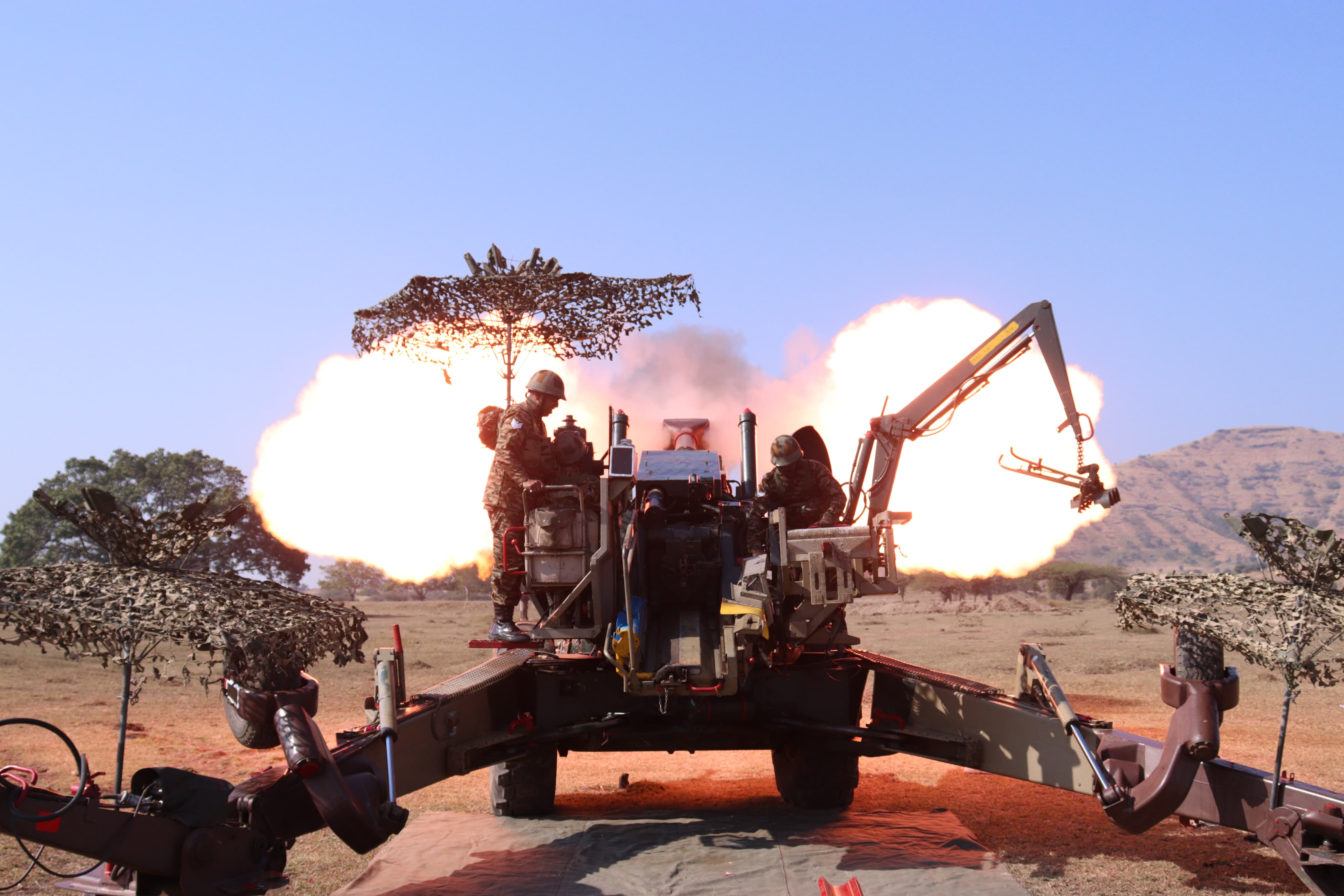
- 17 Dec 2024
In News:
The 13th edition of Exercise Agni Warrior (XAW-2024), a joint military drill between the Indian Army and the Singapore Armed Forces (SAF), concluded successfully at the Field Firing Ranges, Devlali, Maharashtra. The exercise focused on enhancing mutual understanding and interoperability between the two nations’ artillery units.
Key Facts:
- Participating Nations: India and Singapore
- Location: Field Firing Ranges, Devlali, Maharashtra
- Participants:
- 182 personnel from the Singapore Artillery
- 114 personnel from the Indian Army's Regiment of Artillery
- Objective: To maximize mutual understanding of drills and procedures for joint operations under the UN Charter, particularly in firepower planning and execution, utilizing advanced artillery technologies.
- Historical Context: The exercise began in 2004 under a bilateral agreement between India and Singapore and has evolved over the years, now marking 20 years of cooperation.
Purpose and Highlights:
The exercise aimed to reinforce the long-standing defense relationship between India and Singapore, focusing on:
- Joint Firepower Planning and Execution: Both forces demonstrated the use of New Generation Artillery Equipment, enhancing their firepower coordination.
- Enhancing Interoperability: The exercise emphasized seamless coordination between the two armies to operate as a multinational force under the UN Charter, addressing global security challenges.
- Knowledge Sharing: Personnel from both armies exchanged expertise on advanced artillery tactics, fostering a deeper understanding of each other's military capabilities.
- Technological Integration: Both sides integrated cutting-edge technologies, allowing the exchange of best practices in the use of artillery systems.
Key Objectives of XAW-2024:
- Enhanced Interoperability: To ensure smooth coordination in joint operations, fostering the ability to respond to regional security threats.
- Firepower and Coordination Techniques: Sharing expertise on artillery planning, coordination, and execution.
- Advanced Equipment Use: Testing and demonstrating modern artillery systems in joint operations, ensuring both forces are prepared for contemporary warfare.
Structure and Execution:
The exercise was structured to include pre-exercise training, field operations, and a post-exercise evaluation:
- Pre-Exercise: Both armies engaged in interactive sessions to familiarize themselves with each other's artillery tactics and advanced systems.
- Field Operations: Simulated combat scenarios tested joint firepower execution, emphasizing real-time problem-solving and decision-making under pressure.
- Post-Exercise Review: A thorough analysis identified areas for improving joint operations and coordination.
Strategic Significance:
- Strengthening Bilateral Ties: Agni Warrior reinforces the defense partnership, facilitating joint operations that support regional security.
- Regional Stability: The exercise underscores the commitment of both nations to peace and security in the Indo-Pacific region.
- Capacity Building: Both Indian and Singaporean forces gained exposure to sophisticated firepower planning and gained operational readiness for future deployments.
Little Bunting
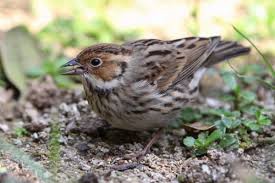
- 16 Dec 2024
In News:
Little Bunting recently spotted in Mount Abu, Rajasthan, a sighting previously unseen in the region.
About the Little Bunting:
- Scientific Name: Emberiza pusilla
- Family: Bunting family (Emberizidae)
- IUCN Red List Status: Least Concern
Distribution:
- Breeding Range: Far northeast Europe and northern Eurosiberia to the Russian Far East (taiga region).
- Migratory Pattern: Migrates to the subtropics during winter, with sightings in northern India, southern China, and northern Southeast Asia.
Physical Features:
- Size: Small bird, measuring 12–14 cm (4.7–5.5 inches).
- Coloration:
- White underparts with dark streaking on the breast and sides.
- Chestnut face with a white malar stripe, black crown stripes, and a white eye-ring.
- Fine dark border behind chestnut cheeks.
- Similarity: Resembles a small female reed bunting but with distinct black crown stripes.
Call and Song:
- Call: Distinctive "zik".
- Song: A rolling "siroo-sir-sir-siroo".
Habitat and Behavior:
- Typically found in agricultural areas, feeding on grains.
- Migration: Avoids extreme cold conditions, possibly due to climate change influencing its movement into Rajasthan.
Recent Sightings in India: Spotted in Gurugram, Chandigarh, northern Punjab, and now Rajasthan.
Conservation Significance: The sighting underscores the need to preserve forest areas and wetlands for migratory species like the Little Bunting.
Search and Rescue Aid Tool (SARAT)
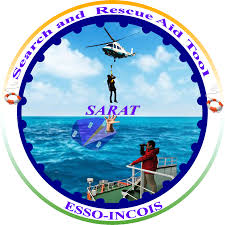
- 16 Dec 2024
In News:
The Indian National Centre for Ocean Information Services (INCOIS), under the Ministry of Earth Sciences, has developed SARAT Version 2 to aid Indian Search and Rescue (SAR) agencies like the Indian Coast Guard.
Key Highlights:
Purpose: SARAT is designed to assist in locating missing objects or individuals at sea by simulating the probable search area, considering factors like wind, currents, and waves.
Improvements in Version 2:
- The search area now starts from the last known position of the object, improving the accuracy of the search.
- Enhanced visualizations for better judgment of probable search areas, including colour coding of regions and markers to identify the last known position.
- Optimized search: Reduces the vast search area to a few high-probability regions, allowing for better utilization of limited search resources.
Technical Aspects:
- The tool uses model currents from the Regional Ocean Modelling System run on high-performance computers at INCOIS.
- It accounts for uncertainties in the initial location and the last known time of the missing object using model ensembling.
- Users can select from 60 types of missing objects based on shape and buoyancy.
Interactive Map & Multi-language Support:
- Results are shown on an interactive map, providing the probable search area.
- The tool also sends results as text messages to emails and mobile phones in languages of coastal states, enabling local fishermen to use it effectively during distress situations.
Launched in 2016, Updated in 2024: SARAT was launched in 2016 and the updated version (SARAT Version 2) has been designed with feedback from the Indian Coast Guard and other stakeholders involved in marine search operations.
Access: The updated SARAT Version 2 can be accessed at: https://sarat.incois.gov.in/sarat/home.jsp.
African Swine Fever
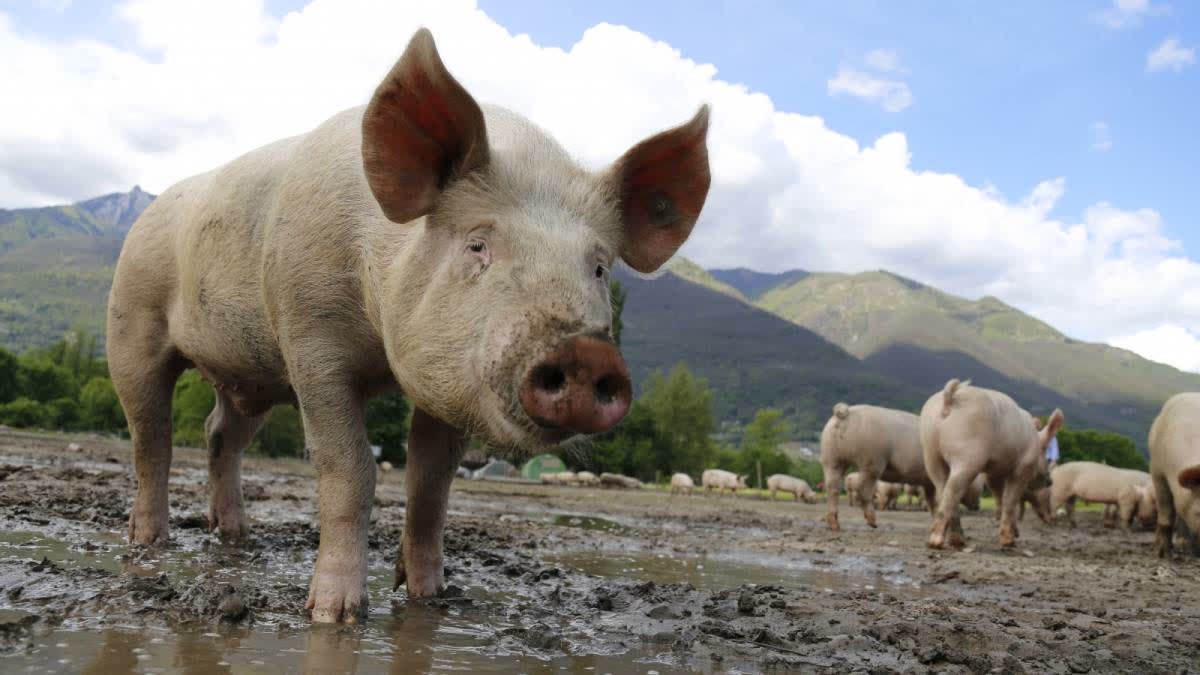
- 16 Dec 2024
In News:
African Swine Fever has been reported at two pig farms in Koottickal and Vazhoor grama panchayats in Kottayam district.
Action Taken:
- Culling of Pigs: All pigs in the affected farms and within a 1 km radius will be culled and disposed of according to Central Government guidelines.
- Infected Zone: A 1 km radius around the affected farms has been declared an infected zone.
- Surveillance Zone: A 10 km radius around the infected area has been designated a surveillance zone.
About African Swine Fever (ASF)
- African swine fever (ASF) is a highly contagious and hemorrhagic viral disease of domestic and wild pigs. It is a notifiable disease and its outbreak should be immediately reported to the higher authorities.
- ASF causes destructive effect on piggery due to high morbidity and mortality (up to 90-100 %). In India it was first confirmed in Arunachal Pradesh and Assam in February-March 2020.
- Currently, there is no effective vaccine available against ASF, so prevention by adopting strict biosecurity measures is the only way to prevent ASF.
CLINICAL SIGNS
- High fever (106-1080 F), lethargy and loss of appetite
- Increased respiration rate
- Blue-purple discoloration of skin of ears, abdomen and rear legs
- Discharge from the eyes and nose; bloody froth from the nose/mouth
- Constipation or bloody diarrhea
- Abortion
- Death of pigs in 6-15 days
Diagnosis: Confirmatory diagnosis in gov. laboratories
Zakir Hussain

- 16 Dec 2024
In News:
Ustad Zakir Hussain, the legendary tabla virtuoso, passed away at the age of 73 due to Idiopathic Pulmonary Fibrosis (IPF).
Key Highlights:
- Career Highlights:
- Born on March 9, 1951, to Ustad Alla Rakha, a renowned tabla maestro.
- Began tabla training at age 7, with early guidance from his father.
- Co-founded Shakti in 1973 with John McLaughlin, blending Indian classical music with Western influences, pioneering world music.
- Worked with global artists, including George Harrison, John McLaughlin, and Mickey Hart.
- Awarded four Grammy Awards, including three at the 66th Grammy Awards (2024), and honored with the Padma Vibhushan in 2023.
- A visiting professor at Stanford and Princeton universities.
- Musical Style:
- Transformed the tabla from a background instrument into a dynamic, expressive solo performance.
- Known for his complex rhythms and spontaneous performances, making tabla accessible and glamorous.
- Emphasized the concept of "hazri" (attendance) in the court of music, seeing his music as an offering to a higher power.
- Cultural Influence:
- His music was a bridge between traditional Indian classical and contemporary global sounds, impacting audiences worldwide.
- Played a pivotal role in the cultural exchange of Indian classical music, gaining fans and respect across the globe.
- Participated in projects such as the Taj Mahal tea commercials and "Desh Raag", symbolizing unity and diversity in India.
What is Idiopathic Pulmonary Fibrosis (IPF)?
- IPF is a chronic lung disease causing scarring of the lung tissue, leading to difficulty in breathing.
- Cause: The exact cause is unknown, hence termed "idiopathic" (unexplained).
- Risk Factors: Most common in older adults (over 50), men, and those with a history of smoking or viral infections.
About the Tabla:
- Structure: Composed of two drums—Tabla (right) and Bayan (left)—used primarily in Hindustani classical music.
- Material: Tabla has a wooden body, while Bayan can be made of clay or metal, both covered with animal skin and syahi paste.
- Role: Primarily accompanies vocal and instrumental performances, and is essential in various classical dance forms in northern India.
- Historical Note: Believed to have been invented by Amir Khusrau.
Prominent Tabla Players:
- Ustad Alla Rakha (father of Zakir Hussain).
- Zakir Hussain (himself).
- Shafat Ahmed and Samta Prasad.
India Maritime Heritage Conclave 2024

- 16 Dec 2024
In News:
The 1st India Maritime Heritage Conclave (IMHC 2024), a landmark event organized by the Ministry of Ports, Shipping and Waterways (MoPSW) was recently held.
Key Highlights:
Event Overview:
- Organized by the Ministry of Ports, Shipping, and Waterways (MoPSW), held on December 11-12, 2024.
- Theme: "Towards Understanding India's Position in Global Maritime History."
- Celebrated India’s maritime legacy and future vision as a maritime powerhouse.
India’s Maritime Heritage:
- Deeply rooted in ancient traditions; references in Rig Veda, mythology, literature, and archaeology.
- Modern India boasts a 7,500 km coastline, 13 major ports, 200 non-major ports, handling 95% of trade by volume and 70% by value.
- Ports handle 1,200 million tonnes of cargo annually, vital for economic growth.
Key Features of IMHC 2024:
- International Participation: Dignitaries from 11 countries, including Greece, Italy, UK.
- Exhibition: Showcased ancient shipbuilding techniques, navigation systems, historical trade routes.
- Cultural Program: Celebrated coastal traditions with performances and festivities.
- Key Focus: Sustainable maritime innovation, skill development, youth engagement, and cultural preservation.
National Maritime Heritage Complex (NMHC):
- Location: Lothal, Gujarat – an ancient Harappan site (2600 BCE).
- Significance: Home to the world’s oldest dry-dock (2400 BCE).
- Future Vision: NMHC to showcase maritime history with 14 galleries, open aquatic gallery, lighthouses, and a research institute.
Modern Maritime Significance:
- India’s Global Maritime Ranking: 16th largest globally, 3rd largest in ship recycling.
- Trade Backbone: 95% of India's trade by volume, 70% by value handled by maritime sector.
- Port Performance: India ranks 22nd in the World Bank’s Logistics Performance Index (2023).
Future Maritime Vision:
- Sustainable Blue Economy: Emphasis on eco-friendly practices, green shipping, and maritime tourism.
- Skill Development: Training programs to empower local communities and boost maritime workforce.
- Infrastructure Development: Upgrading ports and shipping infrastructure under the Sagar Mala Program.
- Policy Framework: Integrated policies for maritime heritage preservation and economic development.
Notable Initiatives:
- Maritime India Vision 2030: Focus on increasing maritime capacity and sustainability.
- SAGAR: Security and Growth for All in the Region initiative.
- Ship Repair & Recycling Mission: Promote India as a global leader in ship recycling.
- Green Hydrogen Hubs: Development of eco-friendly maritime infrastructure.
Santa Ana Winds

- 15 Dec 2024
In News:
The ongoing Franklin Fire in Malibu, California, has burned over 4,000 acres and affected around 22,000 people. Although the exact cause of the fire is still under investigation, experts point to two key factors contributing to the intensity of the blaze: Santa Ana winds and climate change.
Santa Ana Winds
- Santa Ana winds are powerful, dry winds that typically occur in Southern California from October to January.
- They are caused when high-pressure systems over the Great Basin (the area between the Rocky Mountains and Sierra Nevada) push air toward low-pressure areas over California’s coast.
- As the air moves downhill through mountain passes, it compresses and heats up, which significantly lowers the humidity—sometimes to levels below 10%—creating dry conditions. This extremely low moisture content dehydrates vegetation, making it highly susceptible to combustion.
- These winds have been a natural feature of California's weather, contributing to wildfires for years. However, when combined with other factors like climate change, their impact has become more severe.
The Role of Climate Change
While Santa Ana winds have long played a role in California's wildfires, climate change has exacerbated the situation in recent years. The state's wildfire season has lengthened due to rising global temperatures, which have led to:
- Warmer springs and summers.
- Earlier snowmelt in spring, which leaves vegetation drier for longer periods.
- Longer and more intense dry seasons, which cause increased moisture stress on vegetation.
As a result, forests and brushlands are now more vulnerable to fires. Climate change has also contributed to more extreme weather events, including heatwaves, which further dry out vegetation and create favorable conditions for wildfires.
Intensification of Wildfire Seasons
Recent studies have shown that California's wildfire season has grown longer over the past two decades. For example, a 2021 study in Nature Scientific Reports found that the state's annual burn season has shifted, with the peak fire season now occurring earlier in the year, from August to July. Additionally, research published in PNAS (Proceedings of the National Academy of Sciences) in 2023 indicated that the largest wildfires in California history have occurred in the past 20 years, with five of the top 10 largest fires taking place in 2020 alone.
Looking Ahead
The situation is expected to worsen as climate change continues. If global temperatures rise by more than 3°C by the end of the century, as predicted by the United Nations, California’s wildfire risk will likely intensify. The combination of Santa Ana winds and increasingly dry conditions will continue to make areas like Malibu, and much of California, more prone to destructive wildfires.
In conclusion, while Santa Ana winds remain a natural contributor to California's wildfires, the influence of climate change has significantly lengthened the wildfire season, making wildfires more frequent, intense, and harder to control. The continued rise in global temperatures only accelerates these trends, posing a growing challenge for fire management and public safety in California.
'Jalvahak' Scheme for Inland Waterways Promotion
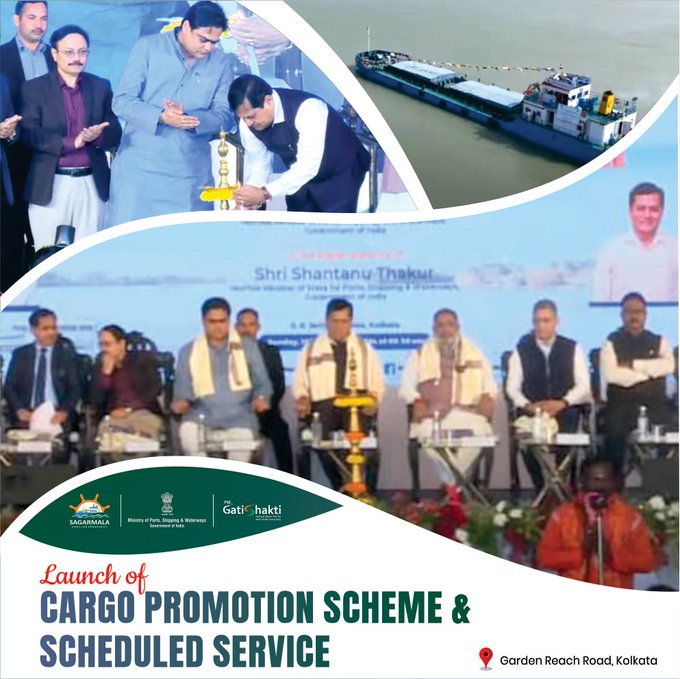
- 15 Dec 2024
In News:
Govt Unveils ‘Jalvahak’ To Boost Inland Waterways, Cargo Movement Incentivised on NW1, NW2 & NW16
Key Highlights:
- Launch of 'Jalvahak' Scheme:
- Launched by: Union Minister for Ports, Shipping & Waterways, Shri Sarbananda Sonowal, on December 15, 2024.
- Objective: The scheme aims to promote the use of inland waterways for long-haul cargo transportation, reduce logistics costs, and alleviate congestion in road and rail networks.
- Targeted Waterways:
- The scheme focuses on three major National Waterways (NWs):
- NW 1: River Ganga
- NW 2: River Brahmaputra
- NW 16: River Barak
- The scheme focuses on three major National Waterways (NWs):
- Incentives:
- The scheme offers up to 35% reimbursement on operating expenses for cargo transported over 300 km via these waterways, particularly using the Indo-Bangladesh Protocol Route (IBPR).
- Encouraging Private Operators: The scheme also incentivizes the hiring of vessels owned by private operators to promote competition and efficiency.
- Scheduled Cargo Service:
- Service Launch: Fixed, scheduled cargo vessel services have been introduced, running between key locations:
- Kolkata - Patna - Varanasi - Patna - Kolkata (for NW 1)
- Kolkata - Pandu (Guwahati) (for NW 2 via IBPR)
- Transit Times: Predefined and fixed for efficiency:
- Kolkata to Patna: 7 days
- Patna to Varanasi: 5 days
- Kolkata to Varanasi: 14 days
- Kolkata to Pandu: 18 days
- Pandu to Kolkata: 15 days
- Service Launch: Fixed, scheduled cargo vessel services have been introduced, running between key locations:
- Economic and Environmental Impact:
- Cargo Shift Target: The initiative aims to shift 800 million tonne-kilometres of cargo by 2027.
- Growth Projections:
- 200 million tonnes of cargo by 2030.
- 500 million tonnes by 2047, supporting the Blue Economy and Atma Nirbhar Bharat initiatives.
- The move to waterways aims to reduce the pressure on India's roads and rail systems, contributing to a more sustainable and cost-effective logistics system.
- Strategic Goals:
- Modal Shift: The scheme seeks to achieve a shift of 800 million tonne-kilometres by 2027 with an investment of ?95.4 crores.
- Sustainability: Inland waterways are considered an environmentally friendly, efficient, and low-cost transportation mode, with a focus on sustainability.
- Logistics Optimization: This initiative is expected to help optimize supply chains for major shipping companies, freight forwarders, and trade bodies involved in bulk and containerized cargo.
- Implementation Agencies:
- Inland Waterways Authority of India (IWAI): The main body responsible for the development and regulation of inland waterways.
- Inland & Coastal Shipping Limited (ICSL): A subsidiary of the Shipping Corporation of India, responsible for the operation of vessels.
- Broader Impact:
- Economic Growth: The scheme is expected to foster economic growth by improving logistics efficiency.
- Decongestion: The initiative aims to decongest the road and rail transport systems, facilitating smoother movement of cargo.
- Regional Connectivity: Enhances connectivity, particularly in eastern India, benefiting areas along the Ganga, Brahmaputra, and Barak rivers.
- About the National Waterways:
- India has 14,500 km of navigable inland waterways, which include rivers, canals, and backwaters. These waterways are significantly under-utilized compared to other countries.
- The National Waterways Act, 2016 declared 111 waterways (including both existing and newly identified ones) for navigation.
- The Jalvahak scheme is part of India's broader strategy to unlock the potential of its inland waterways, offering an efficient, economical, and environmentally sustainable alternative for cargo transport.
Rajmarg Saathi - Upgraded Route Patrolling Vehicles (RPV) by NHAI
- 15 Dec 2024
In News:
With an aim to enhance road safety and strengthen highway patrolling, NHAI plans to implement the upgraded and forward-looking Incident Management Services. The guidelines on the subject include updated specifications for new Route Patrolling Vehicles (RPVs) named ‘Rajmarg Saathi’ and outlines design, functions, technology, components and manpower specifications for the RPVs.
Key Highlights:
Launch of Rajmarg Saathi:
- Initiative by: National Highways Authority of India (NHAI).
- Objective: Enhance highway safety, emergency response, and road maintenance efficiency across India.
- Launched in: December 2024.
What is Rajmarg Saathi?
- Definition: An upgraded version of Route Patrolling Vehicles (RPVs), designed for effective highway patrolling and incident management.
- Main Aim: Improve highway safety and ensure smooth traffic flow through advanced technology and quick emergency responses.
Key Features:
- Advanced Design:
- Closed Cabinets: For organized storage and easy access to emergency tools and inventory, replacing earlier models with open storage space.
- AI-Powered Technology:
- Dashboard Cameras: Equipped with AI-enabled cameras to capture and analyze road conditions like cracks, potholes, and other distresses.
- Road Monitoring: The system also monitors vehicles, pedestrians, road signs, and other infrastructure elements.
- Integration with NHAI One: Data collected by AI systems is integrated into NHAI’s centralized application for efficient road maintenance.
- Emergency Preparedness: The RPVs are fully equipped with modern communication and safety tools, designed to minimize traffic disruptions during emergencies.
Data Collection and Maintenance:
- Weekly Analytics: The system will collect and analyze road condition data weekly to streamline maintenance activities and monitor highway safety.
Vehicle Usage and Replacement:
- Replacement Guidelines: RPVs will be replaced after 3 years of operation or 3,00,000 km to ensure they remain functional and service-ready.
Visibility and Branding:
- External Branding: RPVs are designed to be highly visible with enhanced branding for easy recognition as highway patrol vehicles.
- Uniform for Personnel: The patrolling personnel will wear updated uniforms, including bright blue colors and reflective jackets with authority logos for better identification.
Role in Incident Management:
- RPVs will play a crucial role in managing traffic incidents, ensuring smooth traffic flow, and enhancing road safety by addressing emergencies quickly.
Commitment to Road Safety:
- NHAI remains committed to improving road safety standards and ensuring a smooth, hassle-free travel experience for all users across the national highway network.
About NHAI:
- Establishment: NHAI was established under the National Highways Authority of India Act, 1988, and became operational in 1995.
- Responsibilities: It is responsible for developing, maintaining, and managing national highways in India.
- Objectives:
- Promote transparency in awarding contracts.
- Maintain high standards of project implementation.
- Ensure comfort and convenience for users of the national highway system.
India's Road Network:
- Size: India has the 2nd-largest road network in the world, spanning approximately 63.32 lakh km, which includes national highways, expressways, state highways, and rural roads.
India-Australia CCEA

- 15 Dec 2024
In News:
The 3-day stocktake meeting took place in New Delhi, marking a significant step in strengthening the India-Australia trade and strategic partnership.
Key Highlights:
- Key Discussion Areas:
- Trade in goods and services.
- Mobility, agri-tech cooperation, and market access.
- Focus on ensuring the CECA delivers balanced benefits for both nations.
- Food security concerns and market access modalities aligned with India’s goals.
- Background on Negotiations:
- The discussions in New Delhi were a continuation of the 10th round of negotiations held in Sydney (August 2024).
- Both sides aimed to outline a path forward for the early conclusion of the CECA.
- Importance of CECA:
- CECA is a Free Trade Agreement (FTA) aimed at eliminating tariffs and liberalizing services sectors to enhance business opportunities and cooperation.
- It addresses five key areas: Goods, Services, Digital trade, Government procurement & **Rules of Origin/Product Specific Rules
- New areas under discussion include: Competition policy, MSMEs, Gender, Innovation, Agri-tech, Critical minerals & Sports
- Historical Context:
- CECA negotiations began in May 2011, were suspended in 2016, and resumed in September 2021.
- The India-Australia Economic Cooperation and Trade Agreement (ECTA) was signed in 2022, serving as a foundational agreement and a precursor to CECA.
- Trade Statistics (2023-24):
- India's imports from Australia: $16.2 billion.
- India's exports to Australia: $8 billion.
- Trade has grown significantly, with India being Australia’s 5th-largest trading partner.
- Regional Cooperation Initiatives:
- India and Australia are partners in several regional initiatives:
- Indo-Pacific Economic Framework for Prosperity (IPEF)
- Trilateral Supply Chain Resilience Initiative (SCRI) with Japan.
- India and Australia are partners in several regional initiatives:
- India's CECA with Other Countries:
- India has similar CECA agreements with several nations, including: Singapore, Malaysia, Thailand & New Zealand
- Future Prospects:
- The stocktake discussions have paved the way for further cooperation in areas such as agricultural innovation, market access, and supply chain resilience.
- Both nations are optimistic about the early conclusion of the CECA and the broader economic partnership.
This recent stocktake visit represents a significant step in the ongoing efforts to solidify trade ties and deepen economic cooperation between India and Australia under the framework of the Comprehensive Economic Cooperation Agreement.
100-Day Intensified Nationwide TB Campaign

- 15 Dec 2024
In News:
- Union Health Minister Shri JP Nadda launched a 100-day intensified TB campaign in Panchkula, Haryana, aimed at reducing TB incidence and mortality. The campaign will focus on 347 high-risk districts across India.
Key Highlights:
- Campaign Goals:
- Find and treat missing TB cases, especially in high-risk groups.
- Significantly reduce TB-related deaths.
- Focus Areas:
- The campaign is part of India’s larger goal to eliminate TB before the 2030 SDG deadline.
- Strategies include early detection and rapid treatment of TB patients.
- Historical Context:
- TB was once seen as a "slow death" and patients were isolated.
- In 2018, the Prime Minister set the vision to end TB before 2030.
- Recent Government Initiatives:
- Ayushman Arogya Mandirs network of 1.7 lakh centers helps in early TB detection.
- Increased diagnostic infrastructure: Laboratories increased from 120 in 2014 to 8,293 today.
- Introduction of new drug regimens: Shorter and more effective treatments have increased the treatment success rate to 87%.
- Ni-kshay Support: Rs 3,338 crore transferred to 1.17 crore TB patients via direct benefit transfer.
- Key Achievements:
- TB decline rate in India has increased from 8.3% (2015) to 17.7% today, surpassing the global average.
- TB-related deaths have dropped by 21.4% over the past decade.
- Private Sector Involvement:
- Mandatory notification of TB patients by private practitioners has led to an 8-fold increase in TB case notifications.
- 4Ts Approach for TB Elimination: Test, Track, Treat, and Technology (use of advanced tools for diagnosis and treatment).
- New Initiatives:
- Ni-kshay Vahaan: Mobile vans to detect and treat TB patients in remote areas.
- Launch of national guidelines for a new drug-resistant TB regimen (BPaLM), which is a 4-drug combination therapy for multi-drug-resistant TB.
- Ni-kshay Poshan Yojana:
- Increase in nutritional support: Monthly support raised from Rs 500 to Rs 1000 per TB patient.
- The initiative also includes energy boosters for enhanced patient care.
- Mobile Diagnostics:
- Deployment of AI-enabled portable X-ray units and molecular tests to bring diagnostics closer to people, especially in remote areas.
- Monitoring and Data: Intensified data tracking via the Ni-kshay portal to provide timely updates to TB patients.
- Background of the Campaign:
- Part of the National TB Elimination Programme (NTEP).
- The 347 districts were selected based on indicators like death rates, presumptive TB examination rates, and incidence rates.
- Campaign Materials:
- Unveiling of Information, Education, and Communication (IEC) resources in regional languages.
- Honoring TB Champions and Ni-kshay Mitras during the event.
- Government’s Strategic Framework:
- India’s National Strategic Plan (NSP) for TB elimination (2017-2025).
- TB Harega Desh Jeetega Campaign and Pradhan Mantri TB Mukt Bharat Abhiyan.
- Tuberculosis (TB) Overview:
- TB is caused by Mycobacterium tuberculosis and primarily affects the lungs, spreading through the air.
- Mortality rate has decreased from 28 per lakh (2015) to 23 per lakh (2022).
Desert Knight Air Combat Exercise

- 14 Dec 2024
In News:
India, France and UAE recently kicked off a major air combat exercise called “Desert Knight” over the Arabian Sea, strengthening trilateral defence cooperation and enhancing military interoperability amid the ongoing geopolitical churn.
Key Highlights:
- What It Is: A trilateral air combat exercise aimed at improving military interoperability and enhancing combat readiness among the participating nations.
- Nations Involved: India, France, and the UAE.
- Location: Conducted over the Arabian Sea, approximately 350-400 km southwest of Karachi.
- Aim of the Exercise:
- To strengthen trilateral defence cooperation among the three nations.
- To enhance combat skills and military interoperability of the air forces involved.
- Details of the Exercise:
- Duration: The exercise lasts for three days.
- The exercise involves large force engagement and intensive combat maneuvers in a realistic operational environment.
- Aircraft Involved:
- India: Deployed Sukhoi-30MKIs, Jaguars, IL-78 mid-air refuellers, and AEW&C (Airborne Early Warning and Control) aircraft from bases like Jamnagar.
- France: Deployed Rafale jets and other aircraft from Al Dhafra airbase.
- UAE: Deployed F-16 jets and other aircraft from Al Dhafra airbase.
Strategic Significance:
- The exercise is part of India’s efforts to build military interoperability with nations in the Persian Gulf region and strengthen defence ties with France and the UAE.
- Enhances combat readiness and strengthens cooperation against both traditional and non-traditional threats.
- Reflects the geopolitical shift and growing military cooperation in the Indo-Pacific region, especially in the context of China’s expansionist activities.
- Trilateral Framework: India, France, and the UAE launched a trilateral framework in 2022, focusing on areas like defence, technology, energy, and environment.
- Previous Exercises: In addition to Desert Knight, the countries also conducted their first trilateral maritime exercise in June 2023 to enhance cooperation in maritime security.
Broader Defence Relations:
- India-France: Long-standing strategic partnership with regular joint exercises like Shakti (army), Varuna (navy), and Garuda (air force).
- India-UAE: The defence relationship has grown significantly in recent years, with regular professional exchanges, combat exercises, and staff talks. India participates in the Desert Flag exercise at Al Dhafra airbase annually.
NASA Captures Active Volcano Erupting on Jupiter's Moon Io
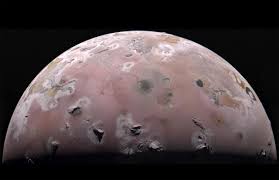
- 14 Dec 2024
In News:
NASA has revealed new details about Io, Jupiter’s third-largest moon and the most volcanic world in our solar system.
Overview:
- NASA’s Juno mission has revealed new insights about Io, Jupiter's third-largest moon, known as the most volcanic world in the solar system.
- Io has over 400 active volcanoes, which send plumes and lava flows into space, creating its unique, fiery surface.
Recent Discoveries and Observations:
- Fiery Heart of Io:
- NASA's Juno mission has helped solve a 44-year-old mystery regarding Io’s volcanic activity, revealing that its volcanoes are likely powered by separate magma chambers rather than a single large magma ocean.
- This discovery was made during Juno’s close flybys in late 2023 and early 2024, using Doppler measurements and precise gravity data to understand the moon’s interior.
- Volcanic Activity:
- Io's volcanoes constantly erupt, spewing lava and plumes that shape its surface. The volcanic activity was first observed by NASA's Voyager 1 spacecraft in 1979.
- Tidal Flexing: Io experiences constant squeezing due to its elliptical orbit around Jupiter, which generates immense internal heat and causes frequent eruptions.
- Scientific Insights:
- The research suggests that tidal forces from Jupiter do not create a global magma ocean inside Io, as previously thought, but instead lead to localized magma chambers that fuel its volcanoes.
- Tidal flexing is the primary cause of the immense internal energy on Io, which melts portions of the moon's interior and drives volcanic activity.
- Broader Implications:
- Understanding Other Moons and Exoplanets: Juno's findings have broader implications for understanding the interiors of other moons like Enceladus and Europa, and even exoplanets and super-Earths.
- Future Missions:
- Juno will continue its mission, with the next close approach to Jupiter scheduled for December 27, 2024, bringing it 2,175 miles above Jupiter's cloud tops. Since entering Jupiter’s orbit in 2016, Juno has traveled over 645 million miles.
Switzerland Suspends MFN Clause in Tax Treaty with India
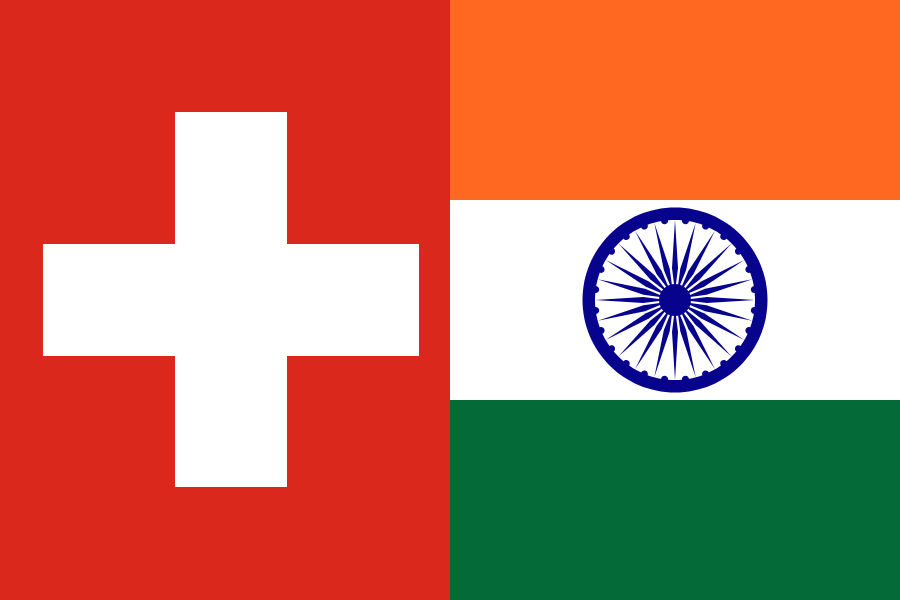
- 14 Dec 2024
In News:
Switzerland scraps MFN status to India, dividend income to face higher tax
Key Highlights:
- Reason for Suspension:
- The suspension follows a 2023 Supreme Court ruling in India, which clarified that the MFN clause in tax treaties is not automatically triggered when a country joins the OECD if the tax treaty with that country was signed before its OECD membership.
- The Court ruled that the Double Taxation Avoidance Agreement (DTAA) cannot be enforced unless it is notified under the Income-Tax Act, 1961.
- Details of the Suspension:
- Starting January 1, 2025, Switzerland will suspend the Most Favoured Nation (MFN) clause in its DTAA with India.
- The MFN clause was part of the India-Switzerland DTAA signed in 1994.
Impact of the Suspension:
- Higher Tax Liabilities for Indian Companies: Withholding tax on dividends from Switzerland will increase from 5% to 10% for Indian companies.
- Effects on Swiss Investments in India: Swiss companies will continue to face a 10% withholding tax on dividends from India, as per the India-Switzerland DTAA.
- Potential Re-evaluation of MFN Clauses by Other Countries: Other countries may reconsider how the MFN clause is applied in their tax treaties with India, following this development.
- No Change for Other Benefits: Other DTAA benefits and investments related to the European Free Trade Association (EFTA) will remain unaffected.
Most Favoured Nation (MFN) Clause Overview:
- Definition: The MFN principle ensures that favorable trading terms given by one WTO member country to another are extended to all other WTO members, promoting non-discrimination.
- Purpose: To ensure equal treatment among trading nations by preventing discrimination, and to promote fair trade and equitable market access.
- Key Features:
- Equal treatment in tariffs, quotas, and trade barriers.
- Members must extend the best terms to all other WTO members.
- Origin: The MFN principle was established after World War II as a cornerstone of the multilateral trading system under the WTO.
- Exceptions:
- Bilateral or regional trade agreements.
- Special access granted to developing countries.
- Non-WTO members (e.g., Iran, North Korea) are not bound by MFN rules.
- Removal of MFN:
- There is no formal procedure under the WTO to suspend MFN status.
- Countries are not obligated to notify the WTO when suspending or removing MFN treatment.
Recent Development:
- From January 1, 2025, Indian companies will face higher withholding tax (10%) on income sourced from Switzerland, as a result of the MFN clause suspension.
Empowering ASHA Workers
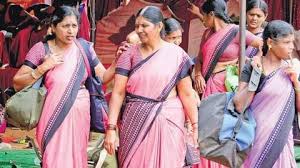
- 14 Dec 2024
In News:
ASHAs (Accredited Social Health Activists) are critical to India's healthcare system, particularly in rural and underserved areas. Since the program's launch in 2005, ASHAs have been integral in improving maternal health, increasing immunization rates, and promoting family planning and sanitation awareness. The network of ASHAs has grown to nearly 1 million members, making it one of the largest community health worker programs in the world.
Role of ASHAs: ASHAs work as community health activists, beyond basic healthcare delivery, by:
- Promoting health awareness.
- Mobilizing local participation in health programs.
- Increasing the utilization of existing health services.
They play a central role in improving maternal and child health, and their efforts have led to increased institutional deliveries and improved immunization rates in rural India.
Challenges Faced by ASHAs: Despite their essential role, ASHAs face several challenges:
- Inadequate compensation and delayed payments, which undermine motivation.
- Heavy workloads with insufficient support and resources.
- Social and economic marginalization, often leading to a lack of recognition and respect.
- Punitive systems that emphasize compliance and record-keeping, hindering autonomy.
This environment limits ASHAs' capacity to act as independent change agents, reducing their effectiveness in driving long-term health improvements.
Psychological Empowerment of ASHAs: To address these challenges, it's essential to empower ASHAs not just financially, but psychologically. Research in motivation theory, particularly Self-Determination Theory (SDT), provides a framework to achieve this. SDT emphasizes the importance of three key psychological needs:
- Autonomy: The need for ownership over one's work.
- Competence: The need to feel capable and effective in performing tasks.
- Relatedness: The need for social connection and recognition.
By fostering these three needs, ASHAs can become more intrinsically motivated and empowered to take ownership of their roles.
Strategies for Empowerment:
- Autonomy: Giving ASHAs more control over their work and decision-making can improve their engagement and efficacy. This can be achieved by reducing rigid monitoring and compliance systems.
- Competence: Providing continuous, quality training and resources will help ASHAs build the skills and confidence needed to perform their roles effectively. Digital tools and modern training programs can be used to enhance their capabilities.
- Relatedness: ASHAs should receive direct feedback from the communities they serve, fostering a sense of connection and accomplishment. Encouraging networks among ASHAs will also help combat isolation and provide peer support.
Government Efforts and Initiatives: The Indian government has recognized the need to support ASHAs through several initiatives:
- Increased remuneration and performance-based incentives.
- Insurance coverage under schemes like Ayushman Bharat.
- Training programs for skill development under the National Health Mission (NHM).
- Village Health Mapping and digital engagement platforms to enhance outreach and feedback mechanisms.
Moving Forward:
To further empower ASHAs, several key steps should be taken:
- Formalizing employment status: Transitioning ASHAs from volunteers to formal workers with benefits can ensure more stability and recognition.
- Improving compensation: Ensuring timely and adequate payments along with performance bonuses will incentivize ASHAs and increase job satisfaction.
- Enhancing infrastructure: Ensuring ASHAs have access to the necessary tools, medical supplies, and transportation to perform their tasks effectively.
- Digital integration: Expanding digital tools for data collection and communication can streamline their work and improve coordination with healthcare systems.
Under the Sal Tree Theatre Festival
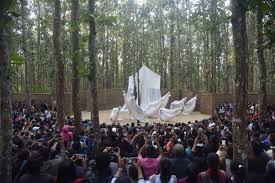
- 14 Dec 2024
In News:
“Under the Sal Tree” Theatre Festival, held annually in Rampur, Assam, promotes eco-friendly and sustainable practices in theatre while showcasing rich cultural diversity.
Overview:
- Location: Rampur village, Goalpara district, Assam
- Organizer: Badungduppa Kalakendra, a social and cultural organization
- Founded: 1998 by Sukracharjya Rabha
- Festival Focus: Eco-friendly theatre practices, cultural diversity, and sustainability
Key Features
- Unique Setting: Open-air festival under Sal trees, with no artificial lighting or electric sound systems.
- Sustainability:
- No use of plastic.
- Carbon-neutral, with eco-friendly materials such as bamboo, straw, and cane.
- Performances in natural daylight, avoiding electric lights.
- International Participation: Theatre groups from countries like Poland, South Korea, Brazil, Sri Lanka, Bangladesh, North Korea, Bolivia, and Holland have performed.
- Cultural Celebration: Highlights indigenous art forms, languages, and traditions, e.g., Rabha and Bodo plays.
Festival Activities
- Performances:
- Includes plays like “Dadan Raja” (Rabha language play), “Kindhan Charithiram” (Tamil), and “Kisan Raj” (Hindi).
- Focus on themes such as societal change and resilience of farmers.
- Workshops & Community Projects: For performing artists, promoting artistic innovation and social impact.
- Anniversary Celebrations:
- 25th anniversary celebrated with special events and book releases, e.g., “Resonance: Echoing the Spirit of Badungduppa” and “Sukracharjya Rabha on the Back Stage”.
Impact & Legacy
- Theatre Movement: Celebrates art amidst nature, breaking geographical barriers despite the remote location.
- Founder’s Vision: Sukracharjya Rabha believed in the synergy between art and nature, aiming to bring social change through theatre.
- Local Involvement:
- 20 resident artists contribute to the festival’s success.
- Festival has become a major cultural attraction in Assam, drawing thousands of theatre enthusiasts.
One Nation, One Election Bill
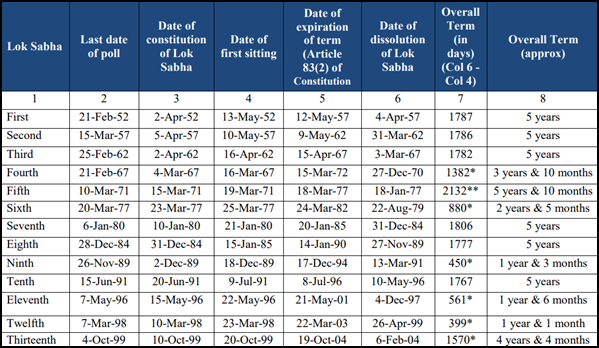
- 13 Dec 2024
In News:
The One Nation, One Election Bill has made significant progress in India, passing the Lok Sabha with 269 votes in favor and 198 votes against. The bill proposes the synchronization of elections for the Lok Sabha, State Legislative Assemblies, and local bodies (Panchayats and Municipalities), aiming to streamline the electoral process, reduce costs, and enhance governance.
Key Updates:
- The bill has been approved by the Union Cabinet and will be reviewed by a Joint Parliamentary Committee (JPC), whose report will be presented for further approval and discussion in Parliament.
- The process will unfold in two phases:
- Phase 1: Simultaneous elections for the Lok Sabha and State Legislative Assemblies.
- Phase 2: Synchronizing local body elections (Panchayats and Municipalities) within 100 days of the general elections.
Historical Context:
- 1951-1967: India previously conducted simultaneous elections for the Lok Sabha and State Assemblies until disruptions, such as premature dissolutions of assemblies, led to staggered elections after 1967.
- The One Nation One Election concept has been revived to address inefficiencies in the current system, especially the high cost of conducting frequent elections.
Advantages of the One Nation, One Election Bill:
- Cost Reduction: Synchronizing elections can significantly lower the financial burden by eliminating the need for multiple election cycles, reducing the deployment of resources like security personnel and election staff.
- Long-Term Governance Focus: Politicians can prioritize governance and policy implementation rather than election campaigning, fostering long-term stability.
- Increased Voter Turnout: Voter fatigue, caused by frequent elections, may reduce, leading to higher turnout as elections occur less often.
- Fairer Political Competition: Smaller regional parties could have a better chance to compete with larger national parties by reducing election-related costs.
- Efficient Use of Resources: Security forces and administrative resources can be deployed more effectively, avoiding the redundancy caused by multiple election cycles.
Disadvantages of the One Nation, One Election Bill:
- Synchronization Challenges: Aligning elections across a vast and diverse country like India, especially in states with unstable political situations, may prove difficult.
- Federalism Concerns: The implementation may require constitutional changes that could impact India's federal structure, potentially limiting the autonomy of states in election matters.
- Impact on Regional Issues: National issues could overshadow regional concerns, diluting the focus on state-specific matters.
- Challenges for Regional Parties: Larger national parties may dominate the electoral landscape, reducing the influence of regional parties and undermining the federal nature of the political system.
- Accountability Risks: Fixed terms without frequent elections might reduce public scrutiny of elected officials, affecting their accountability.
Constitutional Amendments Required:
The implementation of One Nation, One Election requires amendments to several key constitutional provisions:
- Article 83: Regarding the duration of the Lok Sabha, amendments are needed to synchronize the timing of dissolution.
- Article 85: Deals with the sessions and dissolution of Parliament, which needs to be aligned with the new system.
- Article 172: Pertains to the duration of State Legislatures, requiring amendments for synchronization.
- Article 174: Similar to Article 85, it governs the sessions and dissolution of State Legislatures, needing standardization.
Implementation Challenges:
- Logistical Complexity: Conducting simultaneous elections would require immense logistical coordination, including vast numbers of electronic voting machines and trained personnel.
- Political Accountability: Fixed terms may reduce the accountability that frequent elections bring, potentially leading to governance stagnation.
- Impact on Federalism: Amendments to the Constitution regarding state legislatures might face resistance from states concerned about their autonomy.
International Mountain Day 2024
- 13 Dec 2024
In News:
On 11th December 2024, the Ministry of Environment, Forest and Climate Change, in collaboration with the International Union for Conservation of Nature (IUCN) and G.B. Pant National Institute of Himalayan Environment (NIHE), hosted an event titled ‘Youth for the Himalaya: Innovate, Inspire, Impact’ to mark International Mountain Day.
Event Overview:
- The event was themed “Mountain Solutions for a Sustainable Future – Innovation, Adaptation, and Youth.”
- It emphasized the critical role of young people in addressing the environmental challenges faced by the Indian Himalayan Region (IHR).
- The aim was to showcase youth-driven innovations contributing to the region's sustainability, catalyzing active youth participation in environmental actions. This initiative aligns with the Mission LiFE (Lifestyle for Environment), launched by Prime Minister Narendra Modi, which encourages sustainable practices and collective environmental responsibility.
Key Highlights:
- Young changemakers, innovators, and stakeholders from across the country participated, including students, youth representatives, and members of the private sector, civil society, and government.
- The event highlighted discussions on sustainable solutions for the Himalayan region, integrating traditional knowledge with modern technological advancements in areas like eco-tourism, biodiversity conservation, and climate resilience.
- Short films and videos produced by NIHE and IUCN, such as "Promoting Conservation of Threatened Plant Species in the Western Himalayas" and "Himalayan Futures: Voices from the Ground," were also showcased.
International Mountain Day
- International Mountain Day, observed every year on December 11th since 2003, was established by the United Nations to raise awareness about the sustainable development of mountain regions.
- Mountains cover about one-fifth of the Earth's surface and provide essential freshwater to half of humanity, supporting agriculture, clean energy, and health.
Indian Himalayan Region (IHR)
- The IHR spans 13 Indian states and union territories, stretching approximately 2,500 kilometers from west to east. It is a biodiversity hotspot with significant ecological and cultural value. However, it faces challenges such as unsustainable development, climate change impacts, cultural erosion, and rising tourism.
Key Concerns for IHR:
- Unsustainable Development: Infrastructure projects and deforestation disrupt ecosystems.
- Climate Change: Glacial melting and rising temperatures affect water resources and increase flood risks.
- Cultural Erosion: Modernization threatens traditional practices of indigenous communities.
- Tourism Pressure: Waste generation due to growing tourism puts immense pressure on the region's fragile ecology.
Measures for Protection:
- Sustainable Tourism: Promoting eco-tourism and enforcing capacity limits to minimize environmental impact.
- Water Management: Capturing glacial meltwater for agriculture and ecosystem support.
- Disaster Preparedness: Developing disaster management strategies and early warning systems for events like landslides and floods.
- Bio-Cultural Conservation: Protecting both natural biodiversity and indigenous cultural practices through designated zones.
- Integrated Development: Establishing a "Himalayan Authority" for coordinated development in line with Sustainable Development Goals.
India’s Foreign Direct Investment (FDI) Journey Hits $1 Trillion Milestone

- 13 Dec 2024
In News:
India has reached a historic milestone, surpassing $1 trillion in foreign direct investment (FDI) inflows since April 2000. This achievement highlights India’s growing status as a major global investment hub and is further validated by a 26% increase in FDI inflows, which reached $42.1 billion during the first half of FY 2024-25.
Key Highlights of India’s FDI Growth:
- $1 Trillion Milestone: India has attracted a total of $1 trillion in FDI from April 2000 to September 2024. This figure includes equity, reinvested earnings, and other capital inflows.
- 26% Growth in FDI: FDI inflows surged by 26% in the first half of FY 2024-25, totaling $42.1 billion.
- Top Investors: Major investors include Mauritius (25%), Singapore (24%), and the United States (10%). These countries benefit from favorable tax treaties with India, boosting investment.
- Dominant Sectors: FDI has flowed into sectors like services, manufacturing, technology, and telecommunications, with significant investments also in pharmaceuticals, automobile, and construction development.
Factors Behind India’s FDI Success:
- Policy Reforms: India’s liberalized FDI policies, such as allowing 100% FDI in most sectors under the automatic route, have attracted foreign capital. Key reforms like abolishing angel tax and reducing corporate tax rates in the Income Tax Act of 2024 have also enhanced investor confidence.
- Business Environment: India’s rise in global competitiveness is evident in its improvement in rankings. It moved from 43rd to 40th in the World Competitiveness Index 2024 and climbed to 40th in the Global Innovation Index 2023, up from 81st in 2015.
- Investor Confidence: The government’s efforts, including initiatives like "Make in India", Goods and Services Tax (GST), and sector-specific incentives, have fostered a conducive environment for investment.
- Global Investment Standing: India has been the third-largest recipient of greenfield projects globally and saw a 64% increase in international project finance deals.
Contribution of Mauritius and Singapore:
- Mauritius and Singapore lead as the primary sources of FDI into India. Their favorable tax treaties with India make them attractive gateways for foreign investments. Mauritius accounted for 25%, and Singapore for 24% of the total FDI inflows.
Key Sectors Attracting FDI:
- Services Sector: Significant growth in services, especially financial services, has attracted substantial foreign investments.
- Manufacturing and Technology: These sectors have benefited from policies like the Production-Linked Incentive (PLI) schemes, which encourage foreign investments in high-tech manufacturing.
- Telecommunications and Pharmaceuticals: India’s growing digital ecosystem and strong pharmaceutical industry continue to attract international investments.
Importance of FDI for India:
- Infrastructure Development: FDI plays a crucial role in financing infrastructure projects, helping meet the country’s significant infrastructure needs.
- Balance of Payments: FDI helps bridge India’s current account deficit, ensuring stable foreign exchange reserves.
- Technology Transfer and Employment: Foreign investments bring advanced technology and create jobs, boosting productivity across sectors.
- Currency Stability: FDI supports the Indian Rupee in global markets by injecting foreign capital.
Challenges:
Despite the positive trends, India faces challenges such as geopolitical tensions, regulatory issues, global economic uncertainty, and infrastructure bottlenecks that can affect investor sentiment and capital inflows.
Way Ahead:
- Focus on Infrastructure: Continued investment in infrastructure development, including public-private partnerships (PPPs), will be crucial for sustained economic growth.
- Workforce Skilling: Collaborative efforts to upskill the workforce will ensure that India can meet the evolving demands of industries.
- Research and Development: Strengthening R&D and innovation will enhance India’s productivity and global competitiveness.
2024 World Chess Championship
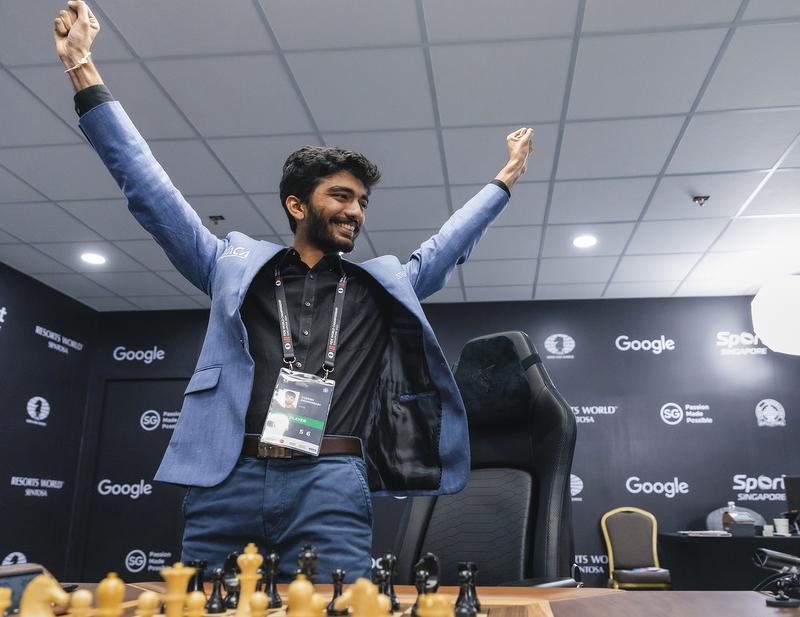
- 13 Dec 2024
In News:
D. Gukesh became the youngest world chess champion after defeating Ding Liren of China in the final game of their match.
Key Facts about the 2024 World Chess Championship:
- Held At: Singapore, from November 25 to December 12, 2024.
- Players: Reigning champion Ding Liren (China) vs. Challenger D. Gukesh (India).
- Significance: This was the first-ever World Championship match contested by two Asian players. Gukesh became the third Asian to win the World Championship after Viswanathan Anand (India) and Ding Liren (China).
- Historical Context: The World Chess Championship was first established in 1886 with Wilhelm Steinitz as the first official World Champion.
- Governing Body: Organized by FIDE (Fédération Internationale des Échecs), which has been responsible for the event since 1948.
- Selection Process: Gukesh earned his spot through his victory in the 2024 Candidates Tournament in Toronto, while Ding Liren was the reigning champion after Magnus Carlsen declined to defend his title.
D. Gukesh: Key Details
- Birth: May 29, 2006, in Chennai, India.
- Grandmaster Title: Achieved at age 12 years, 7 months, and 17 days, making him the third-youngest Grandmaster in history.
- Chess Rating: He is the youngest player to reach a 2750 FIDE rating.
- Significant Wins:
- Gold medals in both team and individual events at the 2024 Chess Olympiad.
- Bronze medal in team events at the 2024 Asian Games.
- Remarkable Fact: Gukesh is four years younger than Garry Kasparov was when he won the World Championship in 1985.
FIDE World Chess Championship Overview:
- Founded: 1924 in Paris; headquartered in Lausanne, Switzerland.
- Governing Body: The International Chess Federation (FIDE) is recognized by the International Olympic Committee and governs global chess competitions. FIDE has 201 member countries.
Indian Chess Achievements:
- Viswanathan Anand: First Indian to win the World Chess Championship (5-time World Champion).
- D. Gukesh: Second Indian to win the World Chess Championship.
Disease X
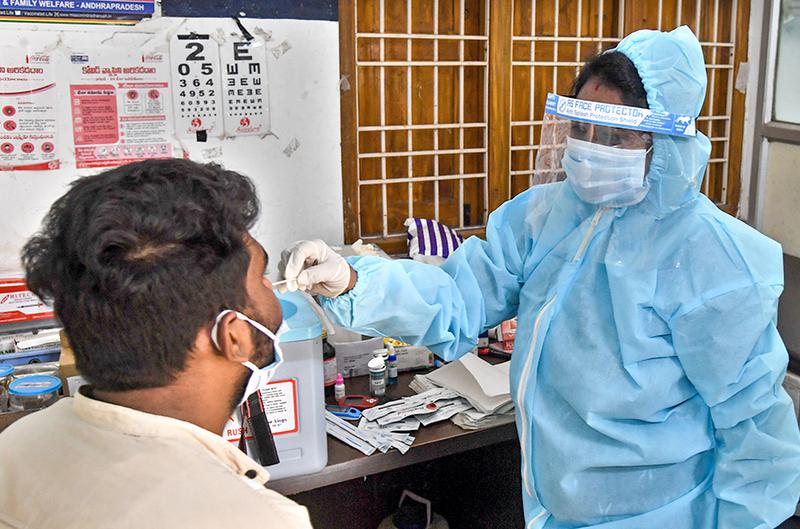
- 13 Dec 2024
In News:
The recent outbreak reported in the first week of December 2024 in the Democratic Republic of Congo, which has claimed over 400 lives and remains unclassified, has raised concerns that it could be an instance of Disease X.
What is Disease X?
- Definition: Disease X is a hypothetical, unidentified pathogen that has the potential to cause a global health crisis, either as an epidemic or pandemic.
- Origins: Could arise from zoonotic spillover (animal-to-human transmission), antimicrobial resistance, bioterrorism, or lab accidents.
- Severity: Predicted to be 20 times more lethal than SARS-CoV-2, with rapid transmission and significant mortality.
- Features: Represents unknown threats, including viruses, bacteria, fungi, or prions.
- Emergence Factors: Driven by deforestation, urbanization, climate change, and human-wildlife interactions.
Historical Context
- Conceptualization: The term was coined by the World Health Organization (WHO) in 2018, post the 2014–2016 Ebola outbreak, which revealed gaps in global health responses.
- Zoonotic Origins: Around 70% of emerging diseases since 1940 have zoonotic origins, linked to human encroachment on wildlife habitats.
WHO’s Priority Pathogen List
- Purpose: To focus global resources and attention on diseases with high epidemic or pandemic potential but lacking sufficient vaccines or treatments.
- Pathogens Listed: Includes Ebola, Marburg, Lassa fever, Nipah virus, Rift Valley fever, Zika virus, and Disease X.
- Criteria: These diseases have high mortality rates, potential for rapid spread, and inadequate preventive or therapeutic options.
Why Disease X is a Concern
- Unpredictability: Its emergence, transmission, and impact remain uncertain, making preparedness challenging.
- Globalization: Increased global travel and trade facilitate rapid spread of diseases across borders.
- Environmental Drivers: Climate change, urbanization, and deforestation disrupt ecosystems, bringing humans into closer contact with wildlife and pathogens.
Patterns in Emerging Diseases
- Zoonotic Spillover: The majority of emerging diseases originate from animals, with over 1.7 million undiscovered viruses in wildlife that could infect humans.
- Increased Outbreaks: Since the mid-20th century, the frequency of new diseases has risen, reflecting environmental, demographic, and global factors.
Challenges in Predicting Disease X
- Uncertainty: The vast pool of potential pathogens (viruses, bacteria, fungi, etc.) makes it difficult to predict the exact nature, origin, or timing of Disease X.
- Environmental and Climatic Changes: Climate change reshapes disease transmission dynamics, expanding the range of diseases like malaria and dengue.
- Technological and Knowledge Gaps: Many pathogens that could cause pandemics are still unidentified. Genomic sequencing and AI are advancing but cannot fully predict Disease X.
Global Preparedness Initiatives
- WHO's Role: WHO’s priority pathogen list and Pandemic Treaty aim to ensure coordinated, global responses to future outbreaks.
- Pandemic Fund: Supports strengthening health systems, especially in low-income countries.
- mRNA Vaccine Hubs: Enhance vaccine production capacity, particularly in developing countries.
- Coalition for Epidemic Preparedness Innovations (CEPI): Works on "prototype pathogen" platforms to create vaccines within 100 days of identifying a new disease.
Indian Initiatives for Disease Surveillance and Preparedness
- Integrated Disease Surveillance Programme (IDSP): Tracks outbreaks, monitors trends, and strengthens the country’s epidemic preparedness.
- National Institute of Virology (NIV): Focuses on researching viral pathogens and zoonotic diseases.
- Biotech Initiatives: Indigenous vaccine development and diagnostic tools are crucial for combating future outbreaks.
- Emergency Response Fund: Allocates resources to support immediate pandemic response efforts.
Key Challenges in Tackling Disease X
- Prediction Complexity: The interactions between humans, animals, and the environment are too complex to predict the exact nature of Disease X.
- Health Disparities: Low- and middle-income countries often lack the infrastructure to effectively combat pandemics, making them more vulnerable.
- Climate Change: Alters transmission dynamics, expanding the range of diseases carried by vectors like mosquitoes.
Way Forward
- Strengthening Surveillance: Implementing real-time genomic sequencing and AI-driven tools for early outbreak detection.
- Global Cooperation: Promoting equitable sharing of vaccines, diagnostics, and treatments to ensure timely and efficient responses.
- Public Health Infrastructure: Invest in strengthening healthcare systems, especially in high-risk regions like the Congo Basin.
- Research and Development: Focus on universal vaccines, diagnostic tools, and prototype pathogen platforms that can be quickly adapted to new diseases.
Indian Scientists Develop Novel Gene Therapy for Haemophilia

- 12 Dec 2024
In News:
Indian scientists have developed a successful gene therapy treatment for severe haemophilia A, a rare inherited blood disorder causing spontaneous, potentially fatal bleeding episodes.
Key Highlights:
Trial Success:
- The trial, conducted at Christian Medical College (CMC), Vellore, involved five patients from Tamil Nadu.
- Results: None of the five patients reported bleeding episodes for over a year after receiving the treatment. The follow-up period averaged 14 months.
- This marks a significant improvement, as haemophilia patients typically experience frequent bleeding episodes requiring regular treatment.
Gene Therapy as a One-Time Solution:
- Traditional treatments involve frequent injections of clotting factors to prevent bleeding.
- The new gene therapy offers a one-time solution, teaching the body to produce enough clotting factor to prevent hemorrhages.
Haemophilia A - Overview:
- Caused by the absence of Factor VIII, a critical blood-clotting protein.
- Hemophilia A primarily affects males (since it's an X-linked disorder), though some females with two defective X chromosomes can also develop the condition.
- Symptoms include prolonged bleeding from minor injuries or internal bleeding in joints and muscles.
Current Treatment Challenges:
- Haemophilia treatments can be expensive and require lifelong care, costing up to ?2.54 crore over a 10-year period.
- The therapy requires repeated infusions of clotting factors or synthetic alternatives, which can be burdensome.
Gene Therapy Details:
- The gene therapy used in this trial involves fusing stem cells with the gene for Factor VIII using a lentivirus vector (safer than other vectors like adenovirus).
- This therapy eliminates the need for repeated Factor VIII infusions, providing a more cost-effective and sustainable solution.
Global Context:
- India has one of the world’s largest haemophilia populations, with an estimated 40,000 to 100,000 patients.
- The success of this gene therapy in India could lead to localized production, reducing treatment costs and increasing accessibility to gene therapy in resource-constrained settings.
Comparison with Roctavian:
- Roctavian, the only FDA-approved gene therapy for haemophilia A, also uses gene delivery to produce Factor VIII, but requires immunosuppressive therapy and is not approved for children.
- In contrast, the Vellore trial's lentivirus-based approach is considered safer, especially for children, with the potential for broader application.
Railways (Amendment) Bill, 2024
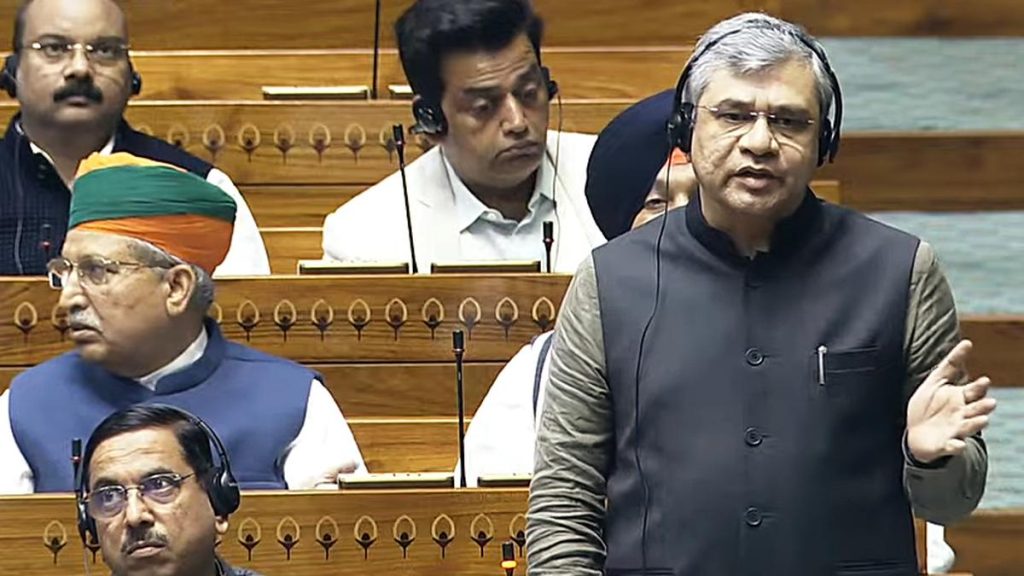
- 12 Dec 2024
In News:
The Railways (Amendment) Bill, 2024 was passed in the Lok Sabha on December 20, 2024, aiming to enhance the functioning and autonomy of Indian Railways.
Key Provisions:
- Repeal of the Indian Railway Board Act, 1905: The Bill repeals the 1905 Act and incorporates its provisions into the Railways Act, 1989, simplifying the legal framework by reducing the need to refer to two separate laws.
- Statutory Backing for Railway Board: The Bill provides statutory backing to the Railway Board, which previously lacked such a legal mandate. It grants the Union government the authority to determine the number of members, their qualifications, terms, and conditions of service.
- Decentralization of Power: The Bill aims to decentralize decision-making, granting greater autonomy to regional railway zones. This shift will allow more independence in budgeting, infrastructure projects, and recruitment, addressing long-standing calls for improved regional empowerment.
- Independent Regulator: The Bill proposes the creation of an independent regulator for overseeing tariffs, safety, and private sector participation. This idea has been supported by previous expert committees to encourage greater competition and transparency in the sector.
- Fast-Tracking Infrastructure and Services: The Bill will streamline approvals for new train services and infrastructure projects, helping meet demands from underserved regions, particularly in states like Bihar.
Objectives:
- Modernization of the Legal Framework: By incorporating the provisions of the 1905 Act into the 1989 Act, the Bill aims to simplify and modernize the legal architecture governing the railways.
- Empowerment of Railway Zones: Autonomy for railway zones is seen as a key step towards improving efficiency and accountability in operations.
- Private Sector Participation: The establishment of an independent regulator is expected to promote private participation in the railway sector, aligning with international standards.
Historical Context:
- The Indian Railways Act, 1890 established the foundations for Indian Railways as a government entity, which was further refined with the Indian Railway Board Act, 1905.
- This Bill aligns with recommendations from previous committees, including the Sreedharan Committee (2014) and the Committee on Restructuring Railways (2015), which have called for greater decentralization and autonomy for railway zones, as well as an independent regulatory body.
Challenges and Proposed Reforms:
- Financial Sustainability: The railways face challenges such as high operating costs, particularly from salaries and pensions, and losses in the passenger segment. Suggestions to improve finances include rationalizing passenger fares, enhancing freight revenue, and attracting private investment in infrastructure.
- Efficient Freight Operations: The Bill also addresses concerns about network congestion, especially for freight operations, and aims to increase the competitiveness of freight transport by improving infrastructure and reducing cross-subsidies from passenger fares.
Recommendations of various Committees on reforming the Railways
Regulatory Structure for Railway Sector
- Set up independent regulator to fix tariffs, promote competition, and protect consumer interests
Organisational structure of Indian Railways
- Corporatisation of Indian Railways
- Reorganise Railway Board to reflect a corporate business structure
- Envision the Railway Board as a policymaker alone
- Provide zones with full financial autonomy
Operations
- Separate core and non-core business (hospitals, schools, catering and security) of the Railways
- Permit private participation in some railway operations
Finances
- Clearly define social obligations and commercial business roles
- Restructure accounting procedure to reflect zone and route-wise profit and loss statements6,7,9
- Develop PPP models to attract private participation in: (i) developing and maintaining stations/ terminals, (ii) leasing of wagons, (iii) freight train operations, (iv) manufacturing of rolling stock, and (v) running non-core business operations
- Monetise railway assets
- Rationalise passenger tariffs
Regulatory Structure for Railway Sector
- Set up independent regulator to fix tariffs, promote competition, and protect consumer interests
Organisational structure of Indian Railways
- Corporatisation of Indian Railways
- Reorganise Railway Board to reflect a corporate business structure
- Envision the Railway Board as a policymaker alone
- Provide zones with full financial autonomy
Operations
- Separate core and non-core business (hospitals, schools, catering and security) of the Railways
- Permit private participation in some railway operations
Finances
- Clearly define social obligations and commercial business roles
- Restructure accounting procedure to reflect zone and route-wise profit and loss statements6,7,9
- Develop PPP models to attract private participation in: (i) developing and maintaining stations/ terminals, (ii) leasing of wagons, (iii) freight train operations, (iv) manufacturing of rolling stock, and (v) running non-core business operations
- Monetise railway assets
- Rationalise passenger tariffs
World Malaria Report 2024
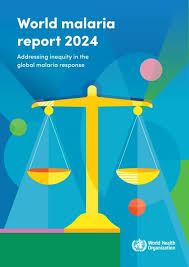
- 12 Dec 2024
In News:
The World Malaria Report 2024 released by the World Health Organization (WHO) highlights significant progress in malaria control, particularly in India, but underscores the continued burden of malaria in Southeast Asia, where India accounts for half of all malaria cases.
About Malaria:
- Cause: Malaria is caused by Plasmodium parasites, primarily P. falciparum and P. vivax, transmitted through bites from infected female Anopheles mosquitoes.
- Transmission: Non-contagious; transmitted via mosquito bites.
- Symptoms: Fever, chills, and headaches appear 10–15 days after the mosquito bite. In some individuals, the symptoms may be mild.
- Prevention: Includes vector control strategies like insecticide-treated bed nets and indoor spraying. Malaria is treatable with early diagnosis and prompt medication.
India’s Malaria Status:
- Progress:
- India has made significant strides in reducing malaria, with cases decreasing from 22.8 million in 2000 to 4 million in 2023, a reduction of 82.4%.
- Similarly, malaria-related deaths dropped by 82.9%, from 35,000 in 2000 to 6,000 in 2023.
- Exit from High-Burden-High-Impact (HBHI) Group:
- India exited this group in 2024, signaling its success in reducing malaria burden.
- Cases dropped by 69% (from 6.4 million in 2017 to 2 million in 2023), and deaths fell by 68% (from 11,100 to 3,500 in the same period).
Key Strategies Behind India's Success:
- Artemisinin-Based Combination Therapy (ACT): Used to treat malaria effectively.
- Long-Lasting Insecticidal Nets (LLIN): Widely deployed to control mosquito populations.
- Targeted Interventions: Focused on forested and tribal areas where malaria transmission is higher, particularly in states like Jharkhand, Odisha, and the North-East.
- Effective Monitoring: Ensures proper implementation of strategies and interventions.
WHO's Global Malaria Report 2024 Highlights:
- Global Burden: In 2023, there were 263 million malaria cases globally and 597,000 deaths. The African region remains the hardest hit, accounting for 95% of malaria deaths.
- Progress Since 2000: Malaria incidence and deaths have significantly decreased. The global number of malaria cases and deaths dropped substantially, with over 2.2 billion cases and 12.7 million deaths averted.
- Malaria-Free Countries: As of November 2024, 44 countries and one territory, including Egypt, have been certified malaria-free.
- Emerging Threats: Drug resistance (especially to Artemisinin) and insecticide resistance are growing concerns, affecting control efforts.
India and Southeast Asia:
- India contributes nearly half of the malaria cases in Southeast Asia, while Indonesia accounts for about one-third. Despite progress, India and Indonesia together accounted for 88% of malaria deaths in the region.
- South-East Asia Progress: The region reduced malaria cases by 82.4% from 22.8 million in 2000 to 4 million in 2023. Timor-Leste and Bhutan reported zero indigenous malaria cases in 2023.
Global Recommendations:
- WHO stresses the need for continued investment, innovative strategies, and targeted actions, especially in high-burden areas like Africa, to sustain progress and tackle remaining challenges, such as drug resistance, insecticide resistance, and new vector species like Anopheles stephensi, which thrives in urban areas.
Smuggling in India Report 2023-24
- 12 Dec 2024
In News:
The annual ‘Smuggling in India - Report 2023-24’ report, which highlights DRI’s performance and experience over the last financial year as well as trends in the field of anti-smuggling and commercial fraud, will be released during the celebration.
Major Narcotics Hubs and Routes:
- Afghanistan, Iran, and Pakistan (The Death Crescent):
- Primary source of heroin trafficked into India.
- Routes via Africa, the Gulf, and India-Pakistan border.
- Myanmar, Laos, and Thailand (The Death Triangle):
- Significant source of synthetic drugs and heroin.
- Drugs often enter India through porous northeastern borders (e.g., Assam, Mizoram).
- Vulnerable regions: Moreh, Churachandpur, Zokhawthar.
- Maritime Routes:
- India’s vast coastline provides opportunities for drug trafficking, often through concealed shipping containers and fishing vessels.
- Air Routes:
- Increased trafficking due to international air traffic.
- Smuggled drugs often concealed in luggage, courier packages, or ingested by mules.
Major Narcotics Trends and Seizures (FY24):
- Cocaine:
- Significant increase in trafficking, particularly from South America and Africa.
- 47 seizures, up from 21 in the previous year.
- Seized quantity: 107 kg.
- Methamphetamine:
- Spiked in northeastern states like Assam and Mizoram.
- Seized quantity in FY24: 136 kg; increased in the first half of FY25 with 123 kg.
- Hydroponic Marijuana:
- Increasing smuggling from the US, Thailand, and other countries.
- Black Cocaine:
- New form of cocaine coated with substances like charcoal or iron oxide to evade detection.
- Contraband Cigarettes:
- Smuggling through sea routes, especially from Southeast Asia and the Middle East.
- Seizures increased by 19% in FY25, reaching 3.95 crore sticks.
- Illicit Gold:
- Significant destination for gold smuggling from West Asia (UAE, Saudi Arabia).
- Seized quantity fell slightly (1,319 kg in FY24), with land and air routes being primary methods.
- Wildlife Smuggling:
- Seizures included 53.5 kg of elephant tusks, leopard skins, live pangolins, and more.
Challenges and Issues:
- Porous Borders:
- Smuggling across eastern borders with Bangladesh, Myanmar, and Nepal remains a significant challenge.
- Difficult terrain in these regions aids traffickers.
- Air and Sea Routes:
- Growing use of air and maritime routes due to faster movement of goods.
- Technology and Detection:
- Emergence of “black cocaine” challenges traditional detection methods.
Anti-Smuggling and Drug Control Efforts:
- International Cooperation:
- United Nations Office on Drugs and Crime (UNODC) and the International Narcotics Control Board (INCB) lead global efforts.
- Paris Pact Initiative targets Afghan opiate trafficking.
- Indian Initiatives:
- Narcotic Drugs and Psychotropic Substances Act (1985) provides legal framework.
- Narcotics Control Bureau (NCB) and Anti-Narcotics Task Force (ANTF) work together for enforcement.
- National Action Plan for Drug Demand Reduction and Nasha Mukt Bharat Abhiyaan focus on awareness and rehabilitation.
ABOUT DRI
- The Directorate of Revenue Intelligence (DRI) is the premier intelligence and enforcement agency on anti-smuggling matters under the aegis of Central Board of Indirect Taxes & Customs (CBIC), Government of India.
- It came into existence on 4th December 1957.
- With its Headquarters at New Delhi, 12 Zonal Units, 35 Regional Units and 15 Sub-Regional Units, DRI has been carrying out its mandate of preventing and detecting cases of smuggling of narcotic drugs & psychotropic substances, gold, diamonds, precious metals, wildlife products, cigarettes, arms, ammunitions & explosives, counterfeit currency notes, foreign currency, SCOMET Special Chemicals, Organisms, Materials, Equipment and Technologies) items, hazardous & environmentally sensitive materials, antiques etc. and taking punitive action against the organised crime groups engaged therein.
- DRI is also engaged in unearthing commercial frauds and instances of customs duty evasion.
Hyperloop Technology
- 12 Dec 2024
In News:
India’s first hyperloop test track (410 meters) completed by Indian Railways, IIT-Madras’Avishkar Hyperloop team and TuTr (incubated startup) at IIT-M discovery campus, Thaiyur in Chennai, Tamil Nadu.
India’s First Hyperloop Test Track:
- Location: IIT Madras’ Discovery Campus, Chennai.
- Collaboration: Indian Railways, IIT-Madras' Avishkar Hyperloop team, and TuTr Hyperloop (startup).
- Track Length: 410 meters.
- Test Speed: Initial successful test at 100 km/h; plans for 600 km/h in the next phase.
- Passenger Capacity: 40–100 passengers per pod, depending on design.
What is Hyperloop Technology?
- Concept: A high-speed transport system using pods in low-pressure vacuum tubes, designed to achieve speeds similar to aircraft (up to 1,100 km/h).
- Working:
- Magnetic Levitation (Maglev): Pods float on magnets, eliminating friction.
- Vacuum Tubes: Reduces air resistance for high-speed travel.
- Propulsion: Linear induction motors propel pods.
- Energy: Solar-powered, designed for zero emissions.
India’s Hyperloop Projects:
- Current Status:
- Successful testing of a 410-meter test track at IIT Madras.
- Ongoing feasibility studies for routes like Chennai Airport–Parandur, Mumbai–Pune, and Amritsar–Chandigarh.
- Phase 1 & 2: First phase involves a 11.5-kilometer track; future expansion to 100 km.
- Mumbai–Pune Corridor: Planned as India’s first full-scale Hyperloop system, aiming to reduce travel time from 3–4 hours to 25 minutes.
Benefits of Hyperloop:
- Speed: Capable of reaching speeds up to 1,100 km/h (operational speed around 360 km/h).
- Efficiency: Reduces travel time, energy-efficient with reduced air resistance and friction.
- Sustainability: Powered by renewable energy (e.g., solar power), offering zero emissions.
- Point-to-Point Travel: No intermediate stops, making it more time-efficient.
Challenges:
- Infrastructure Costs: Expensive to build the vacuum tubes, stations, and supporting systems.
- Land Acquisition: Difficulty in acquiring land, especially in densely populated areas.
- Regulatory Issues: Lack of a specific regulatory framework for such advanced transport systems.
- Technological Barriers: Complex engineering challenges, including development of maglev systems and vacuum seals.
Global Context:
- Origin: Concept proposed by Elon Musk in 2013.
- Worldwide Adoption: Hyperloop is being explored globally, with projects in the U.S., UAE, and Europe.
GG Tau A System

- 11 Dec 2024
In News:
GG Tau A System: Located about 489 light-years from Earth, this system is a triple-star setup that is between 1 to 5 million years old. This makes it an ideal system for studying the early stages of planetary formation.
Findings from the Discovery:
- Protoplanetary Disk: The system features a protoplanetary disk made of gas and dust, where new planets are forming. Researchers from NISER (National Institute of Science Education and Research), Odisha detected emissions from key molecules in the disk.
- Chemical Molecules: The molecules are frozen on tiny dust particles in the coldest regions of the disk (temperatures between 12 K and 16 K). These frozen molecules could serve as the building blocks for new planets.
Significance of the Discovery:
- Triple-Star Configuration: GG Tau A’s triple-star system is rare, and it has complex gravitational interactions among the three stars. This complicates how the gas and dust disk behaves and provides unique insights into planetary formation in multi-star systems.
- Study of Planet Formation: Traditionally, planets form around single stars or in binary systems. However, multi-star systems like GG Tau A present challenges for planet formation. Studying this system helps scientists understand how planets can form in more complex environments.
- Cold Conditions for Planet Formation: The study found that icy conditions in the disk are essential for the accumulation of materials that form planets. These low temperatures (below the freezing point of carbon monoxide) allow dust and gas particles to clump together, creating the foundation for exoplanets.
Broader Implications:
- Exoplanet Diversity: This research enhances our understanding of how planets form in different types of star systems, contributing to the study of exoplanets and their potential diversity across the universe.
- Astrophysics and Planetary Science: This discovery plays a crucial role in improving our knowledge of the early stages of planet formation, especially in complicated star systems like triple-star setups, which are rare but can provide valuable insights into how planetary systems evolve under unique conditions.
Research Tools:
- The team used advanced radio telescopes located in the Atacama Desert (Chile) to observe the emissions from the disk, highlighting the role of cutting-edge technology in space exploration and astronomical research.
Champions of the Earth Award
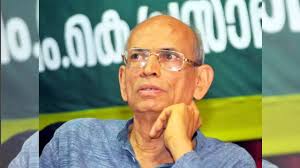
- 11 Dec 2024
In News:
- Madhav Gadgil, an Indian ecologist, received the UN Environment Programme (UNEP)'s Champions of the Earth Award in 2024.
- The Champions of the Earth Award is UNEP’s highest environmental honor, recognizing individuals, organizations, and governments for significant contributions to environmental protection and sustainable development.
Contributions of Madhav Gadgil:
- Work in Western Ghats:
- Gadgil is recognized for his seminal work in the Western Ghats, an ecologically sensitive region in India, which is a global biodiversity hotspot.
- He chaired the Western Ghats Ecology Expert Panel (WGEEP), formed by the Indian government to assess the impacts of population pressure, climate change, and development on the region.
- Recommendations by WGEEP:
- Ecologically Sensitive Area (ESA): Recommended declaring the entire Western Ghats range as an ESA.
- The WGEEP suggested dividing the Western Ghats into three Ecologically Sensitive Zones (ESZ) based on environmental sensitivity.
- Development Restrictions: Proposed a ban on activities like mining, quarrying, thermal power plants, and large-scale hydropower projects in the most sensitive zones (ESZ-1).
- Governance Recommendations: Suggested a bottom-to-top governance approach, beginning with Gram Sabhas, and the creation of a Western Ghats Ecology Authority (WGEA) for effective management.
- Impact of Gadgil’s Work:
- His research and recommendations have played a crucial role in shaping environmental policy and public opinion in India.
- The UNESCO World Heritage status for the Western Ghats in 2012 was a significant step in global recognition of the region’s ecological importance.
About the Champions of the Earth Award:
- History & Significance:
- Established in 2005, the award recognizes trailblazers working towards addressing the triple planetary crisis: climate change, biodiversity loss, and pollution.
- Since its inception, it has honored 122 laureates who have shown outstanding leadership in environmental conservation.
- 2024 Awardees:
- Madhav Gadgil (India) – for his work on the Western Ghats.
- Sonia Guajajara (Brazil) – for advocacy for Indigenous rights and environmental protection.
- Amy Bowers Cordalis (USA) – for her work in Indigenous rights and ecosystem restoration.
- Gabriel Paun (Romania) – for defending Europe’s old growth forests from illegal logging.
- Lu Qi (China) – for contributions to afforestation and combating desertification.
- SEKEM (Egypt) – for advancing sustainable agriculture.
Key Facts about UNEP:
- UN Environment Programme (UNEP):
- Established in 1972, UNEP is a leading global authority on environmental issues.
- UNEP aims to address climate change, nature and biodiversity loss, and pollution through scientific research, policy support, and public advocacy.
- UNEP is headquartered in Nairobi, Kenya and works closely with 193 Member States to tackle the planet’s most pressing environmental challenges.
Ayush Visa
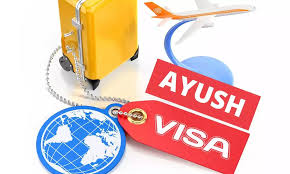
- 11 Dec 2024
In News:
- Recently, the government introduced a separate category of Ayush Visa for foreigners seeking treatment under the Ayush systems of medicine (Ayurveda, Yoga, Unani, Siddha, and Homeopathy).
- The Ayush Visa is available in four sub-categories:
- Ayush Visa: For foreigners visiting India for therapeutic care and wellness treatment in accredited hospitals/wellness centers.
- Ayush Attendant Visa: For attendants accompanying patients seeking Ayush treatment.
- e-Ayush Visa: An electronic version of the Ayush Visa for convenience.
- e-Ayush Attendant Visa: For attendants accompanying patients on an e-Ayush Visa.
- Visa Statistics (as of December 4, 2024):
- 123 regular Ayush visas have been issued.
- 221 e-Ayush visas issued.
- 17 e-Ayush attendant visas issued.
- Advantage Healthcare India Portal:
- The Ministry of Health and Family Welfare launched the Advantage Healthcare India portal, an official platform for Medical Value Travel (MVT).
- The portal facilitates information for international patients seeking medical treatment and wellness services in India.
- The website for accessing the portal is www.healinindia.gov.in.
- Government's Objectives: The government aims to sensitize stakeholders involved in MVT, including Ayush facility providers, to ensure smooth services for international patients.
Human Rights Day 2024
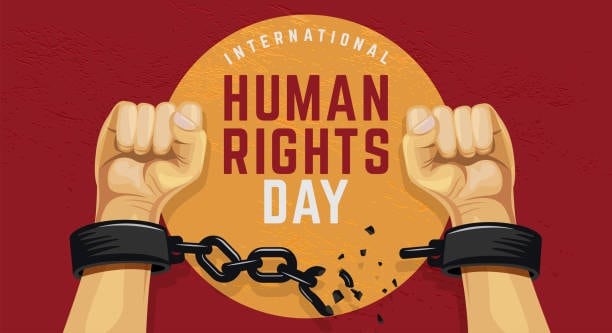
- 11 Dec 2024
In News:
Human Rights Day 2024 celebrated every year on 10th December is dedicated to promote protection of fundamental rights and freedom of all individuals.
Key Highlights:
- Purpose: Promote and protect human rights and freedoms worldwide.
- Theme (2024): “Our Rights, Our Future, Right Now” – highlights the importance of immediate action to protect and uphold human rights globally.
Historical Significance:
- Commemorates: The adoption of the Universal Declaration of Human Rights (UDHR) by the UN General Assembly in 1948.
- UN Resolution: Established by UN Resolution 423 (V) in 1950.
- First Observance: December 10, 1950.
- Father of Human Rights Day: Eleanor Roosevelt, for her pivotal role in drafting the UDHR.
Key Highlights:
- The UDHR:
- Adopted in 1948, it defines fundamental human rights for all individuals.
- Comprises 30 articles, addressing rights such as freedom, equality, and access to education, healthcare, and fair employment.
- Role of the UN: UN Human Rights Council (UNHRC): A body under the UN responsible for monitoring and promoting human rights worldwide, comprising 47 member states.
- Human Rights Day Focus in 2024:
- Emphasizes human rights education, particularly among the youth.
- Addresses emerging challenges like cybercrimes, AI impacts, and climate change.
- Reaffirms the importance of safeguarding human dignity globally.
Human Rights Declared by UDHR:
- Right to freedom and equality
- Right to life, liberty, and security
- Freedom from slavery and torture
- Right to recognition before the law
- Equal protection under the law
- Right to a fair trial
- Right to privacy and protection from attacks
- Right to work and fair employment
- Right to rest and leisure
- Right to education
- Right to an adequate standard of living
- Right to participate in government and cultural activities
AgeXtend

- 11 Dec 2024
In News:
- AgeXtend is developed by researchers at Indraprastha Institute of Information Technology – Delhi (IIIT-Delhi) to rapidly identify age-defying compounds, known as geroprotectors, to promote healthy aging.
Key Features of AgeXtend:
- What is AgeXtend?
- An AI-based platform designed to discover compounds with geroprotective (anti-aging) properties.
- Objective: To accelerate the identification of molecules promoting longevity by reducing the time and effort compared to conventional research methods.
- Development: Developed by researchers from the Indraprastha Institute of Information Technology (IIIT), Delhi.
- Working Mechanism:
- Scans over 1.1 billion compounds to predict, analyze, and validate molecules with anti-aging potential.
- Utilizes machine learning to determine efficacy, safety, and mechanisms of action.
- Experimental validation conducted using yeast, worms (C. elegans), and human cell models.
- Significance:
- The largest study on longevity, including compounds from commercial drugs, FDA-approved drugs, Ayurvedic, and Chinese medicine.
- Provides a scientific rationale for identifying geroprotective compounds, aiding targeted research.
- Open-source code and data promote collaboration and allow commercial exploration.
Platform Capabilities:
- AI Analysis:
- Uses bioactivity data from existing geroprotectors to predict new compounds with similar properties.
- Evaluates geroprotective potential, toxicity, and identifies target proteins and mechanisms of action for accuracy and safety.
- Unique Feature: Explains why a compound is considered geroprotective, revealing underlying mechanisms.
- Example Validation: Successfully identified benefits of metformin and taurine without prior knowledge, confirming the platform’s predictive power.
- Study Scale: The study involved scanning over 1.1 billion molecules, making it the largest study on longevity to date.
Open-Source and Commercial Use:
- Availability:
- The code and data are available as open-source for researchers and students. Commercial access is available for a fee.
- A Python package for AgeXtend is available via pip on pypi.org.
- Further Collaboration: The researchers have reached out to pharma companies to further investigate promising compounds.
- Exploring Natural Compounds: AgeXtend also explores natural compounds from the human microbiome, investigating their role in controlling cell aging.
Sora Turbo

- 10 Dec 2024
In News:
OpenAI officially launched Sora Turbo, its advanced text-to-video artificial intelligence (AI) tool, marking a significant development in the field of visual AI generation. This follows Google’s recent expansion of its video-generative AI tool, Veo, for Vertex AI customers. However, hours after Sora Turbo’s release, OpenAI temporarily disabled sign-ups due to overwhelming demand.
Key Features of Sora Turbo:
- Text-to-Video Generation: Users can input text prompts, and Sora Turbo will generate videos based on the provided descriptions. This makes it one of the first widely accessible AI-powered video generation models.
- Video Quality & Formats: Sora Turbo can generate videos in 1080p resolution, lasting up to 20 seconds. It supports both vertical and horizontal formats.
- Remix Options: Users can remix the AI-generated videos with their own assets, allowing for customization and extension of the content.
- Speed & Interface: The tool has been optimized for faster video generation compared to its previous version, with a new user interface designed to make the process more intuitive.
- Subscription Plans:
- ChatGPT Plus ($20/month): Users get up to 50 videos at 480p resolution per month or fewer videos at 720p resolution.
- ChatGPT Pro ($200/month): Offers 10 times more usage, with higher resolution and longer durations.
User Access and Availability:
- Access Requirements: To use Sora Turbo, individuals need to subscribe to either the ChatGPT Plus or ChatGPT Pro plans. The tool is included in these subscriptions without additional charges.
- Geographic Limitations: As of now, Sora Turbo is unavailable in the European Union, United Kingdom, and Switzerland.
Metadata & Safety Features:
- Transparency: All videos generated by Sora Turbo will include C2PA metadata for content provenance and authenticity, along with a visual watermark.
- Abuse Prevention: OpenAI has implemented safeguards to block the generation of harmful content, including child sexual abuse materials and sexual deepfakes.
Future Developments:
OpenAI has plans to offer tailored pricing for different users starting in early 2025. Additionally, Sam Altman, CEO of OpenAI, described Sora as a groundbreaking product, comparing it to the early days of GPT technology, and emphasized its potential for co-creation and innovative visual content generation.
INS Tushil Commissioned into the Indian Navy in Russia
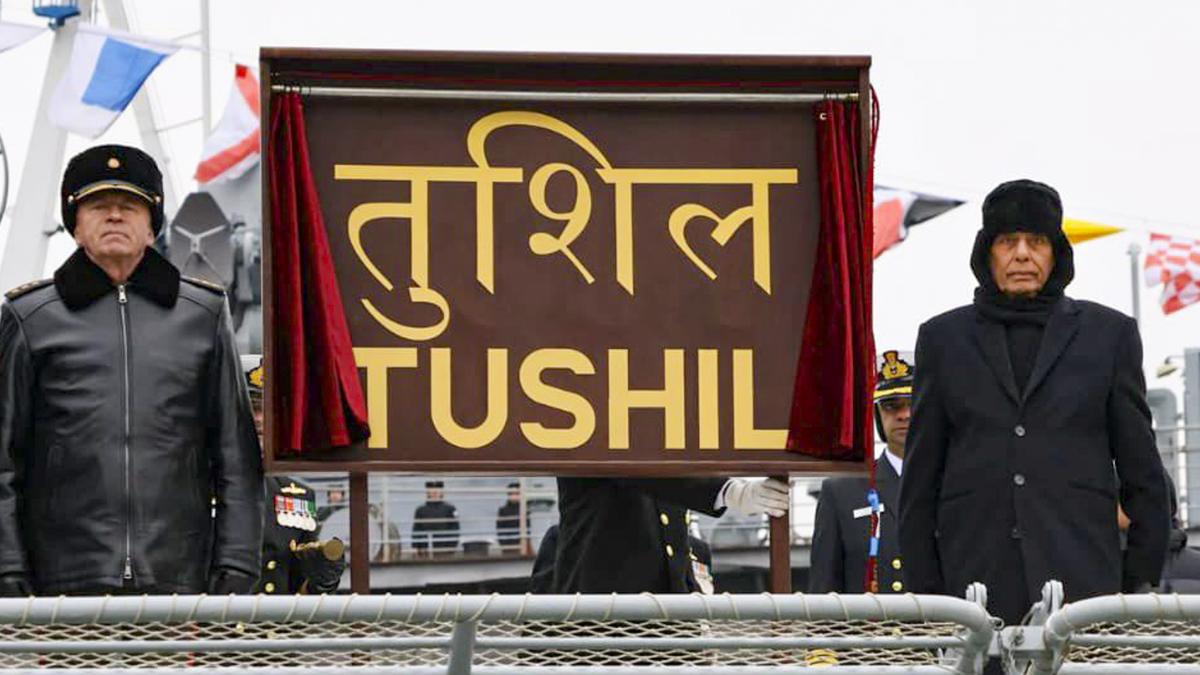
- 10 Dec 2024
In News:
Recently, the Indian Navy officially commissioned INS Tushil, a multi-role stealth guided missile frigate, at Kaliningrad, Russia. This marks a significant milestone in India-Russia defense cooperation and strengthens India’s maritime capabilities.
About INS Tushil:
- Class & Design: INS Tushil is the seventh ship in the Krivak III class (Project 1135.6) of frigates. It is part of an upgraded series, following the Talwar-class and Teg-class frigates, and was built at the Yantar Shipyard in Kaliningrad, Russia.
- Development & Contract: The construction was initiated under a 2016 contract between the Indian Government, JSC Rosoboronexport (a Russian defense company), and the Indian Navy. The ship incorporates 26% indigenous technology, highlighting growing cooperation between Indian and Russian industries.
- Key Features:
- Stealth Design: With advanced radar-absorbing features, it is less detectable by enemy radar.
- Weaponry: Equipped with BrahMos supersonic cruise missiles, Shtil Surface-to-Air Missiles, anti-submarine torpedoes, electronic warfare systems, and more.
- Versatility: Designed for blue-water operations, the ship can engage in air, surface, underwater, and electromagnetic warfare.
- Helicopter Deck: Supports operations of upgraded Kamov 28 and Kamov 31 helicopters.
- Speed: Capable of exceeding 30 knots.
Significance:
- Enhanced Naval Capabilities: The commissioning of INS Tushil boosts India’s defense strength in the Indian Ocean Region (IOR), a vital area for global maritime trade and security.
- Maritime Security: INS Tushil is designed to support India’s vision of maintaining stability in the IOR and to act as a deterrent against piracy and other maritime threats.
- Defense Cooperation: This commissioning exemplifies the growing defense ties between India and Russia, underscored by joint development, technology transfer, and shared expertise. The ship reflects a major step in India's self-reliance in defense, in line with the “Aatmanirbhar Bharat” initiative.
- Strategic Role in Global Defense: The ship is a key asset in the Indian Navy's efforts to secure maritime trade routes, enhance regional security, and provide humanitarian assistance in times of need.
Key Events & Facts:
- Construction Timeline: The keel of INS Tushil was laid in 2013, and it launched in 2021. After completing extensive sea and weapon trials in 2024, it was formally commissioned into the Navy.
- Collaborative Effort: The ship is a product of collaborative efforts between Indian and Russian industries, marking a significant achievement in joint defense manufacturing.
Governor of the Reserve Bank of India (RBI)
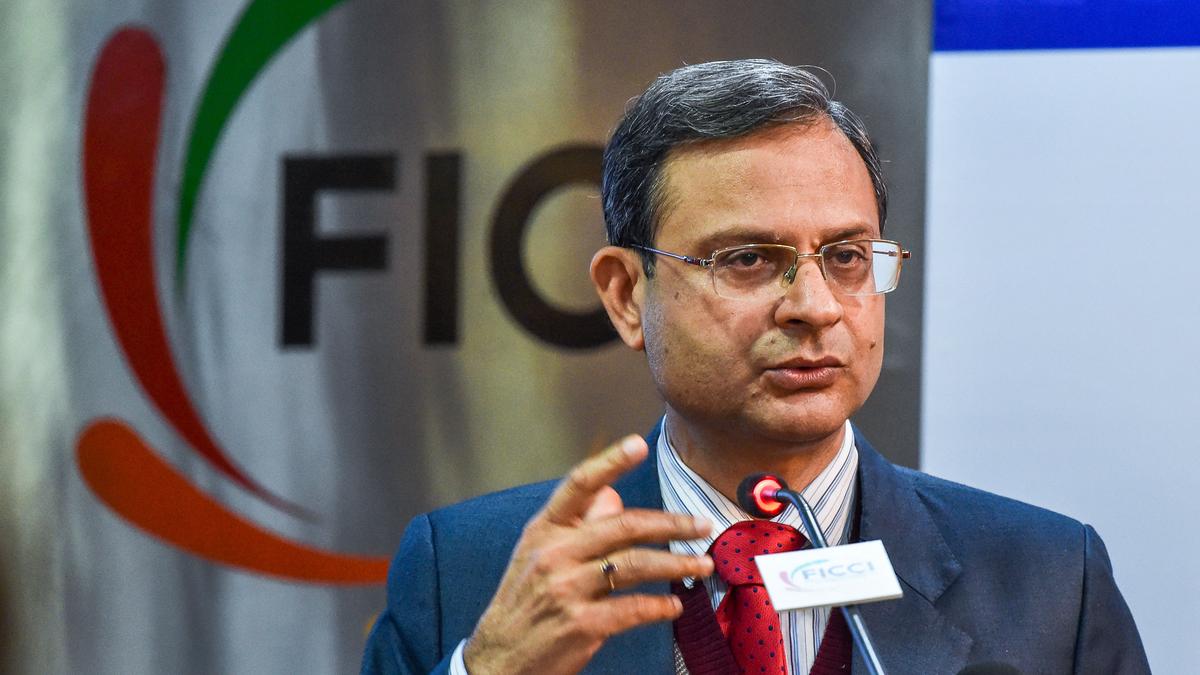
- 10 Dec 2024
In News:
Recently, the Government of India announced the appointment of Sanjay Malhotra as the 26th Governor of the Reserve Bank of India (RBI). He replaces Shaktikanta Das, whose six-year tenure ends on December 10, 2024.
Background of Sanjay Malhotra:
- Education & Early Career: Sanjay Malhotra is a 1990-batch IAS officer from the Rajasthan cadre. He holds a degree in Computer Science Engineering from the Indian Institute of Technology (IIT) Kanpur and a Master’s in Public Policy from Princeton University.
- Professional Experience: Malhotra has over 33 years of experience in various sectors including power, finance, taxation, information technology, and mines. He is currently serving as the Revenue Secretary in the Ministry of Finance, a position he has held since October 2022. Prior to this, he was Secretary of the Department of Financial Services.
- Monetary Policy and Challenges: As RBI Governor, Malhotra will inherit the responsibility of steering India's monetary policy, especially as inflation has been a persistent issue and economic growth has slowed. His first monetary policy review is expected in February 2025.
About the Appointment Process:
RBI Governors are appointed by the Government of India, and the appointment process involves the Financial Sector Regulatory Appointment Search Committee, which includes the Cabinet Secretary, the current RBI Governor, the Financial Services Secretary, and two independent members. The committee prepares a list of eligible candidates, interviews them, and the final decision is made by the Cabinet Committee on Appointments, chaired by the Prime Minister.
RBI Governors Eligibility Criteria
- The RBI Act, 1934 does not mention any specific qualification for the governor. People with different educational backgrounds were selected to head the institution. However, the governor traditionally is either a civil services personnel or an economist.
- Candidates should have prior experience in areas such as:
- Working with the International Monetary Fund (IMF) or World Bank.
- Serving as Chairman or General Manager of a bank.
- Holding significant positions in reputable financial or banking organizations.
- Working in the Ministry of Finance of the Government of India.
- The candidate must be an Indian citizen aged 35 years or older.
- The candidate cannot be a member of Parliament, State Legislature, or hold any other office for profit
Key Responsibilities of the RBI Governor:
- Monetary Policy: The RBI Governor chairs the Monetary Policy Committee (MPC), which is responsible for setting benchmark interest rates and managing inflation.
- Regulation of Financial Institutions: The Governor oversees the regulation of banks, non-banking financial companies (NBFCs), and other financial institutions.
- Currency Management: The Governor ensures the proper issuance of currency and the withdrawal of unfit notes.
- Crisis Management and Policy Execution: The Governor is pivotal in managing financial crises and ensuring the execution of policies related to foreign exchange and financial inclusion.
National Panchayat Awards 2024
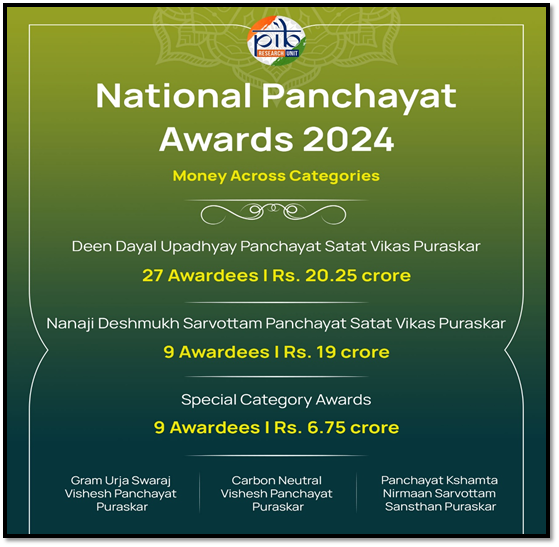
- 10 Dec 2024
In News:
The National Panchayat Awards 2024 celebrated the remarkable contributions of 45 Panchayats from across India for their role in driving sustainable and inclusive development in rural areas. The awards were presented on 11th December 2024 at Vigyan Bhawan, New Delhi, with President Smt. Droupadi Murmu and Union Minister of Panchayati Raj Shri Rajiv Ranjan Singh (Lalan Singh) presiding over the event.
Key Highlights:
- Categories of Awards: The awards focus on rural governance, social inclusion, environmental sustainability, and the achievement of the United Nations Sustainable Development Goals (SDGs) through Localization of SDGs (LSDGs).
- Deen Dayal Upadhyay Panchayat Satat Vikas Puraskar (DDUPSVP): Recognizes top-performing Gram Panchayats across 9 thematic areas like health, water, sanitation, and governance.
- Nanaji Deshmukh Sarvottam Panchayat Satat Vikas Puraskar: Awarded to the best Panchayats based on overall excellence across all LSDG themes.
- Gram Urja Swaraj Vishesh Panchayat Puraskar: Honors Panchayats for contributions to renewable energy.
- Carbon Neutral Vishesh Panchayat Puraskar: Awarded to Panchayats achieving net-zero carbon emissions.
- Panchayat Kshamta Nirmaan Sarvottam Sansthan Puraskar: Recognizes institutions supporting Panchayats in implementing LSDGs.
- Notable Achievements:
- Women’s Leadership: 42% of the award-winning Panchayats were led by women.
- States with Top Performers: States like Tripura, Odisha, and Maharashtra were prominently recognized for their achievements, especially in sustainability efforts like carbon neutrality and renewable energy adoption.
- Prize Distribution: A total of ?46 crore was awarded to the 45 winners, with funds directly transferred to their accounts.
Objectives:
The National Panchayat Awards aim to:
- Promote rural development through effective Panchayat governance.
- Encourage competition among Panchayats for improving public services and infrastructure.
- Recognize excellence in implementing sustainable development practices.
Key Themes of the Awards:
The awards are aligned with 9 LSDG themes that contribute to achieving 17 SDGs:
- Poverty-Free and Enhanced Livelihoods
- Healthy Panchayat
- Child-Friendly Panchayat
- Water-Sufficient Panchayat
- Clean and Green Panchayat
- Self-Sufficient Infrastructure
- Socially Just and Secured Panchayat
- Panchayat with Good Governance
- Women-Friendly Panchayat
The National Panchayat Awards 2024 underscore the significant role of Panchayats in shaping rural India by focusing on inclusive and sustainable development. The awards also promote the importance of localized governance in achieving SDGs, encouraging other Panchayats to adopt best practices and contribute to India's overall development goals.
Reforms in Merchant Shipping
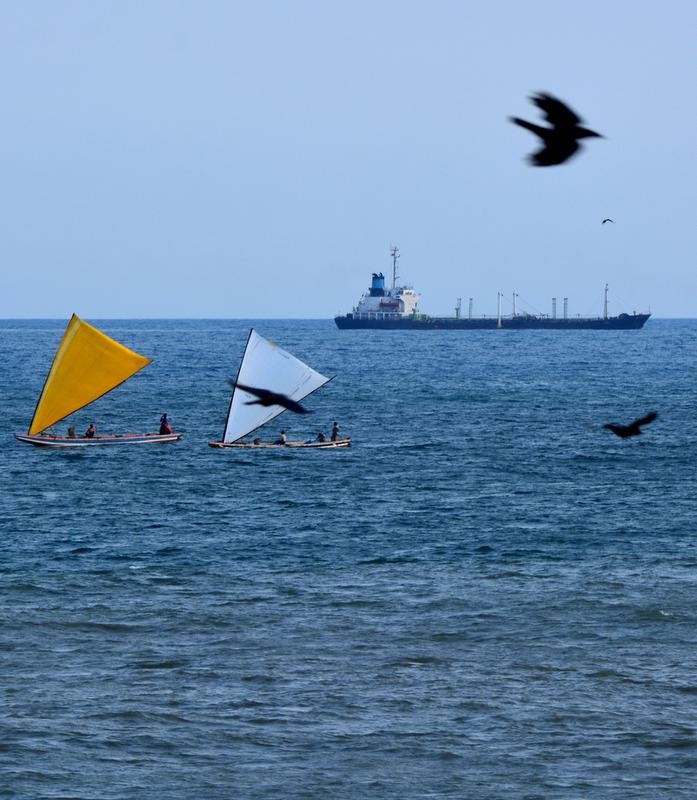
- 10 Dec 2024
In News:
The Government is preparing to introduce several significant bills aimed at driving much-needed reforms in the shipping industry. Key among them are the Merchant Shipping Bill, 2024 and the Coastal Shipping Bill, 2024, both of which promise to bring transformative changes to boost the sector.
Context and Need for Reforms:
- Outdated Framework: The Merchant Shipping Act, 1958, and the Coasting Vessels Act, 1838, fail to address the current needs of the shipping sector, particularly offshore vessels.
- Regulatory Gaps: Inadequate regulation of offshore vessels, maritime training institutions, and welfare provisions for seafarers on foreign-flagged ships.
- Global Alignment: Need to align with international maritime conventions and modernize administration for competitiveness and better governance.
- Investment and Growth: Outdated laws hinder foreign investment and ease of doing business, necessitating a regulatory overhaul.
Key Features of the Merchant Shipping Bill, 2024:
- Ease of Vessel Registration:
- Reduces ownership threshold for Indian entities from 100% to 51%, enabling NRIs, OCIs, and foreign entities to invest.
- Facilitates registration of vessels chartered by Indian entities under the "bareboat charter-cum-demise" system, promoting capital-deficient entrepreneurs.
- Temporary registration provisions for vessels destined for demolition, boosting India's ship recycling industry.
- Expansion of Vessel Scope:
- Broadens the definition of "vessel" to include all types of mechanized and non-mechanized crafts, such as submersibles, hydrofoils, and Mobile Offshore Units (MOUs).
- Ensures comprehensive regulatory oversight, particularly in the offshore sector, enhancing transparency and safety.
- Coastal Security:
- Strengthens coastal security by empowering authorities to issue instructions to all types of vessels, addressing vulnerabilities highlighted by incidents like the 26/11 Mumbai attacks.
- Marine Pollution Measures:
- Incorporates global standards like the MARPOL convention to address marine pollution.
- Introduces measures such as reducing sulphur content in marine fuel and banning single-use plastics on Indian ships.
- Launch of the ‘Swachh Sagar’ portal to ensure proper disposal of ship-generated waste.
- Seafarer Welfare:
- Expands welfare provisions to include Indian seafarers working on foreign-flagged ships, offering protections under the Maritime Labour Convention (MLC).
- Ensures better working conditions and safety standards for a growing workforce of Indian seafarers abroad.
- Maritime Training Regulations:
- Establishes a legal framework to regulate maritime training institutions, addressing the rise of unauthorized institutes post-liberalization.
- Ensures standardized, high-quality education and eliminates fraudulent practices.
Coastal Shipping Bill, 2024:
- Focus on Commercial Utilization of Coastal Waters:
- Distinguishes between the technical regulation of ships and the commercial utilization of Indian coastal waters.
- Aims to streamline licensing, operations, and coastal planning, enhancing the integration of inland and coastal shipping.
- Alignment with ‘Sagarmala’ Program: Supports the promotion of coastal shipping through better infrastructure and connectivity, in line with the government's ‘Sagarmala’ initiative, which boosts port connectivity and coastal trade.
International Conventions India Has Ratified:
- MARPOL: Focuses on preventing ship-based pollution.
- Maritime Labour Convention (MLC): Protects seafarers' rights and ensures fair working conditions.
- Bunker Convention: Addresses liability for oil pollution damage.
- Wreck Removal Convention: Mandates safe removal of shipwrecks.
- Civil Liability Convention: Establishes liability for oil pollution incidents.
Significance of the Reforms:
- Modernized Framework: Aligns India’s maritime laws with global standards for enhanced competitiveness.
- Economic Growth: Encourages foreign investment and entry into the shipping sector by removing regulatory barriers.
- Environmental Sustainability: Focus on combating marine pollution and ensuring sustainable shipping practices.
- Enhanced Safety and Security: Strengthens coastal security and ensures stringent safety regulations for vessels.
- Seafarers’ Welfare: Extends benefits and protections to Indian seafarers working globally, ensuring better working conditions.
- Maritime Education: Provides a robust regulatory framework to ensure high-quality, standardized maritime training.
Black holes in Webb data allay threat to cosmology’s standard model
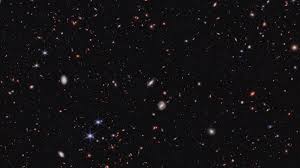
- 09 Dec 2024
In News:
The James Webb Space Telescope (JWST), launched almost three years ago, has provided unprecedented insights into the early universe. Astronomers were surprised to find large, fully-developed galaxies when the universe was only 400-650 million years old, a timeframe previously thought to be too early for such structures.
The Challenge to the Standard Model:
- Cosmological Expectations: According to the standard model of cosmology, the first stars formed around 100-200 million years after the Big Bang, and galaxies began to form within the first billion years.
- Unexpected Findings: JWST observations seemed to show that galaxies were already large and well-formed much earlier than expected, raising questions about the timeline of galaxy formation.
New Study's Contribution:
- The Study: A study published in the Astrophysical Journal in August 2024, examined JWST data from the Cosmic Evolution Early Release Science (CEERS) Survey. They focused on galaxies from 650 to 1,500 million years after the Big Bang.
- Key Findings: One explanation for the unexpected size and number of early galaxies is that these galaxies formed stars much more efficiently than those in the modern universe. This could account for the larger-than-expected galaxies.
The Role of Black Holes:
- Impact of Black Holes: The study also explored the presence of black holes at the centers of early galaxies. These black holes, which emit significant light, were previously unaccounted for in the star mass estimations of galaxies. When the researchers removed the light from black holes (referred to as "little red dots"), they found that the galaxies were not as massive as initially thought.
- Correction to Previous Estimates: This adjustment in calculations helped align the data with the standard model of cosmology, sparing it from a major revision.
Implications for the Standard Model:
- Star Formation Efficiency: The study suggests that extreme conditions in the early universe, including abundant gas and less disruptive stellar events, could explain the higher efficiency of star formation.
- Cosmology's Stability: Despite earlier challenges to the standard model, the new findings support its predictions, showing that more efficient star formation and the role of black holes could explain the rapid growth of galaxies in the early universe.
Future Research Directions:
- Expanding Data Sets: The team plans to incorporate more data from JWST to study even earlier galaxies, which could help refine our understanding of galaxy formation in the early universe.
- Further Observations: As the team continues to explore galaxies from even earlier periods (around 400 million years after the Big Bang), they aim to strengthen their findings and provide further evidence to either support or challenge the current cosmological models.
RBI's Stance on De-dollarisation and Risk Diversification

- 09 Dec 2024
In News:
- Governor Shaktikanta Das clarified that India is not pursuing "de-dollarisation," but rather aiming to diversify risk in trade. Measures like local currency trade agreements and Vostro accounts are intended to reduce reliance on the US dollar without eliminating it entirely.
- Objective: The goal is to de-risk India's trade, not to fully replace the dollar, especially amidst rising geopolitical tensions.
Key Highlights:
Vostro Accounts and Local Currency Trade:
- Vostro Accounts: These accounts, held by foreign banks in Indian rupees, facilitate transactions in local currencies, helping mitigate the risks of dollar dependency.
- International Currency Trade: By promoting trade in local currencies, the RBI seeks to reduce exposure to fluctuations in the dollar's value. However, these efforts have faced challenges due to India’s limited international presence in goods and services trade.
Gold Purchases by Central Banks:
- Surge in Gold Purchases: Global central banks, including the RBI, have significantly increased gold holdings. India added 27 tonnes in October 2024 alone, the largest increase among central banks.
- Motivations for Gold: The surge in gold buying reflects growing concerns about geopolitical risks, including the Ukraine war, and the potential for secondary sanctions. Gold is seen as a safe haven asset that diversifies reserves away from the US dollar.
Decline in Dollar Dominance:
- Global Shift: The share of the US dollar in global reserves has been gradually declining, partly due to the rise of the Chinese yuan. Central banks are increasingly turning to gold and alternative currencies as part of a diversification strategy.
- Impact on Emerging Markets: Countries like India are particularly motivated to reduce reliance on the dollar due to geopolitical tensions and economic vulnerabilities linked to the dollar’s dominance.
India’s Domestic Currency Trade Initiatives:
- Trade with Russia and UAE: India is actively exploring trade in domestic currencies with countries like Russia and the UAE to reduce dependence on the dollar. However, these efforts have faced slow uptake due to India’s trade deficit with most countries except the US.
- Challenges in Adoption: Despite efforts to internationalize the rupee, high transaction costs and lack of sufficient demand for rupee-based trade are significant barriers.
BRICS and Shared Currency Discussions:
- Geopolitical Complexity: BRICS nations, due to their geographical and economic diversity, have discussed the possibility of a shared currency, but no consensus has been reached.
- Reluctance Toward Yuan: India has resisted using the Chinese yuan for transactions, particularly for Russian oil imports, despite the yuan’s growing acceptance. This reflects India’s desire to maintain economic sovereignty and avoid over-reliance on a single currency.
Regional Implications of Dollar Volatility:
- Neighbourhood Impact: Countries like Sri Lanka, Bangladesh, Nepal, and Pakistan have experienced significant financial distress due to declining dollar reserves and surging oil prices, exacerbated by the Ukraine war.
- India’s Resilience: India’s strong dollar reserves have helped it maintain economic stability, but the country remains cautious of dollar volatility, particularly as oil prices rise.
Conclusion:
- Strategic Balance: India’s approach reflects a strategic balance of mitigating risks while ensuring global trade stability. The RBI’s emphasis on gold accumulation and pushing for rupee-based trade demonstrates a desire to reduce exposure to the dollar, but challenges like trade deficits and high transaction costs still hinder the full realization of these goals.
- Economic Sovereignty: Through these measures, India seeks to safeguard its economic sovereignty and financial stability in an increasingly unpredictable global economy.
Oilfields Amendment Bill, 2024
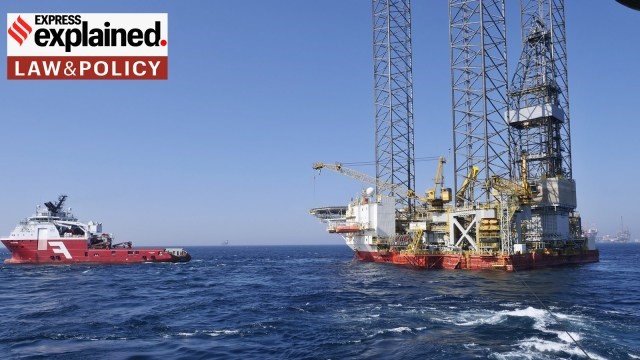
- 09 Dec 2024
In News:
To encourage domestic production of petroleum and other mineral oils, along with private investment in these sectors to reduce import dependence, the Rajya Sabha passed the Oilfields (Regulation and Development) Amendment Bill, 2024.
Key Details:
- Objective:
- Encourage domestic petroleum production.
- Reduce import dependence by promoting private investment in the oil sector.
- Key Amendments:
- Delinking petroleum from mining:
- The Bill separates petroleum and mineral oil production from mining activities.
- The Oilfields (Regulation and Development) Act, 1948, is amended to focus on mineral oils, distinct from the Mines and Minerals (Development and Regulation) Act, 1957.
- Expanded Definition of Mineral Oils:
- Includes hydrocarbons in various forms (natural gas, crude oil, petroleum, coal bed methane, and shale gas/oil).
- Excludes coal, lignite, and helium from the definition (falling under the Mines and Minerals Act).
- Petroleum Lease:
- Replaces the term "mining lease" with "petroleum lease."
- Covers activities such as exploration, development, production, and transportation of mineral oils.
- Private Investment:
- Provisions to attract private investment by clarifying rules for petroleum leases.
- Current mining leases remain valid without altering terms to the lessee's disadvantage.
- Decriminalization and Penalties:
- Replaces criminal punishment with financial penalties.
- Fines can go up to Rs. 25 Lakh, with additional penalties for ongoing violations.
- Rule-making Power of Central Government:
- Expands the Centre's authority over petroleum lease regulations, conservation, royalties, mergers, facility sharing, environmental protection, and dispute resolution.
- Delinking petroleum from mining:
- Significance of the Bill:
- Energy Access and Security: Ensures energy security by boosting domestic production.
- Attracting Investment: Creates a conducive environment for private sector investment.
- Environmental Safeguards: Provisions to control carbon emissions and promote renewable energy in oilfields.
- Opposition Criticism:
- State Rights on Mining: Concerns raised by opposition parties, particularly the DMK, about the reduction of state control over resource taxation (taxing mineral rights).
- Impact on Federal Balance: States traditionally manage mining rights under the Constitution’s State List (Entry 50). The Bill may shift control to the Union List (Entry 53), creating constitutional concerns.
- Environmental Concerns:
- Opposition figures like P.P. Suneer (CPI) argue for prioritizing public companies like ONGC, fearing privatization may worsen environmental governance.
- Adjudication of Disputes:
- Appeals against penalty decisions will be handled by the Appellate Tribunal, as per the Petroleum and Natural Gas Regulatory Board Act, 2006.
- Broader Significance:
- Energy Independence: Reduces reliance on fuel imports, fostering energy security and economic stability.
- Regulation: Strengthens the enforcement mechanism for petroleum operations while encouraging private participation.
Petroleum and Natural Gas Regulatory Board (PNGRB):
- Formation: Established under the Petroleum and Natural Gas Regulatory Board Act, 2006.
- Functions: Regulates refining, transportation, distribution, storage, marketing, and sale of petroleum products and natural gas.
- Role in the Bill: Ensures competitive markets for gas and handles appeals regarding regulatory decisions.
Markhor Spotted in North Kashmir's Baramulla
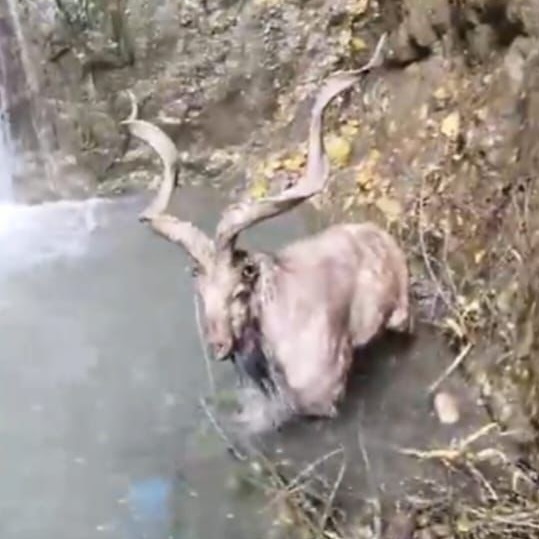
- 08 Dec 2024
In News:
Recently, a Markhor, a rare wild goat with spiral-shaped horns, was spotted in Noorkha village of Boniyar in Baramulla district, North Kashmir.The animal was seen near a waterfall in Noorkha, prompting locals to alert the authorities.
Key Highlights:
- The Markhor (Capra falconeri) is a large, wild goat species native to mountainous regions in Central and South Asia, including countries such as Pakistan, Afghanistan, India, and others.
- The species is considered endangered and is listed under Schedule I of the Wildlife Protection Act, 1972.
- The Markhor population in India is concentrated in areas like Shopian, Banihal Pass, Shamsbari, and Kazinag in Jammu and Kashmir.An estimated 300 Markhors live in Kashmir's dense pine and birch forests.
- Threats and Conservation Status:
- The Markhor faces threats due to human activities and natural factors, leading to a decline in its population.
- It is classified as 'Near Threatened' on the IUCN Red List and protected under the Indian Wildlife Protection Act and the Jammu and Kashmir Wildlife Protection Act.
- Significance of the Sighting:The sighting of the Markhor has excited both villagers and wildlife enthusiasts, as these animals are not typically found outside their natural habitats, particularly near human settlements.
Kawasaki Disease
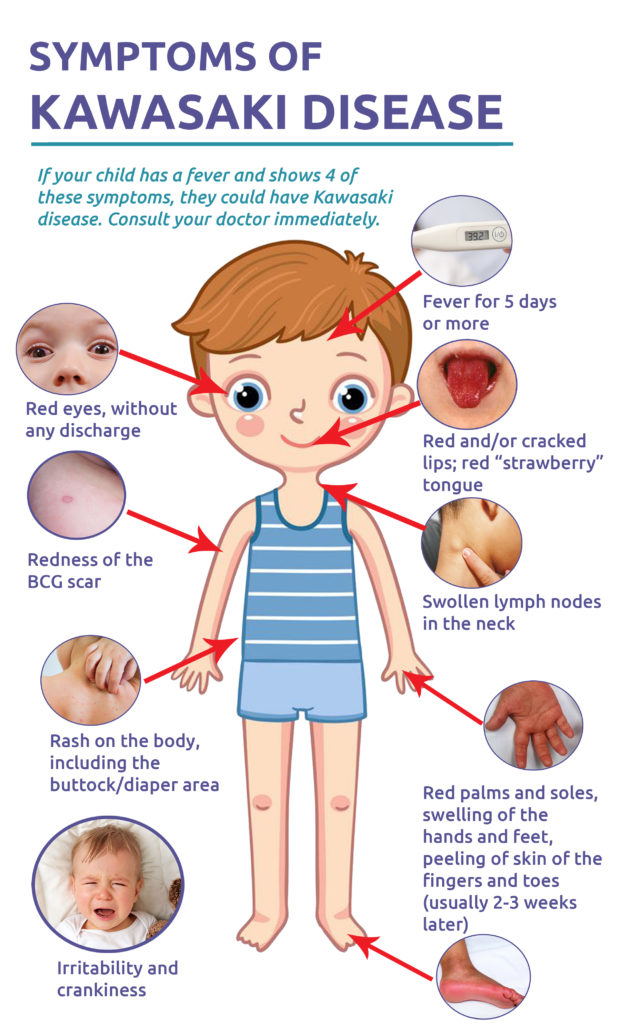
- 08 Dec 2024
In News:
Comedian Munawar Faruqui recently opened up about a tough time in his life when his young son was diagnosed with Kawasaki disease.
What is Kawasaki Disease?
- Kawasaki disease is a rare condition that primarily affects children under the age of five.
- It causes inflammation in the blood vessels, including those that supply blood to the heart.
- With early treatment, most children recover without long-term health issues.
Possible Causes:
- The exact cause of Kawasaki disease is not well understood.
- Experts believe it may be triggered by a combination of genetic and environmental factors, including certain infections.
Symptoms: Kawasaki disease symptoms typically appear in two phases and may last for several weeks. Common symptoms include:
- High fever lasting more than five days.
- Red eyes without discharge.
- A rash on the body, particularly in the chest and groin area.
- Swollen hands and feet, sometimes accompanied by redness.
- Red, cracked lips and a swollen, red tongue.
- Swollen lymph nodes, particularly on one side of the neck.
Detection & Treatment:
- There’s no test that can directly detect Kawasaki disease. But healthcare providers can do tests that support a diagnosis of Kawasaki disease or rule out other possible illnesses.
- Treatment for Kawasaki disease includes:Immune globulin (IVIG), or human blood proteins you receive by IV. About 10% of children may not respond to the first dose of IVIG and will need a second dose or other medications.
Community and Individual Forest Rights in Anamalai Tiger Reserve (ATR)
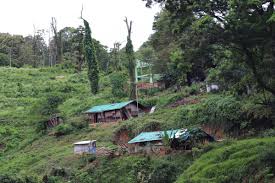
- 08 Dec 2024
In News:
- The Coimbatore District Collector, granted community and individual forest rights under the Forest Rights Act, 2006, to tribal settlements in the Anamalai Tiger Reserve (ATR) on December 6, 2024.These rights were handed over to three tribal settlements and 14 families at a function in Coimbatore.
Key Highlights:
- Community Forest Rights:
- Three tribal settlements in ATR—Nagaroothu I, Nagaroothu II, and Chinnarpathi—were granted community rights.
- These rights allow the settlements to collect forest produce excluding timber, such as mango, amla, honey, tamarind, and grass for making brooms.
- Individual Forest Rights:
- Individual rights were granted to 14 families from the Old Sarkarpathy tribal settlement.
- The families had requested these rights for traditional cultivation practices passed down by their ancestors.
- The individual rights were approved after the recommendation of a sub-divisional committee and scrutiny by a district-level committee.
- About the Forest Rights Act (FRA), 2006:
- Purpose: The FRA was enacted to address historical injustices faced by forest-dwelling communities and ensure their livelihood and food security.
- Key Provisions:
- Individual Rights: Self-cultivation, habitation, and in-situ rehabilitation.
- Community Rights: Access to grazing, fishing, water bodies in forests, and protection of traditional knowledge and customary rights.
- Eligibility: Rights can be claimed by any community or individual who has lived in the forest for at least three generations (75 years) before December 13, 2005.
- Critical Wildlife Habitats: The Act mandates that critical wildlife habitats in national parks and sanctuaries remain inviolate for wildlife conservation.
- Authorities Involved in Vesting Forest Rights:
- Gram Sabha: Initiates the process for determining the nature and extent of rights.
- Sub-Divisional Level Committee: Examines resolutions passed by the Gram Sabha.
- District Level Committee: Grants final approval for forest rights.
- Challenges with Forest Rights Implementation:
- The Xaxa Committee pointed out several challenges in the implementation of the FRA, such as:
- Arbitrary rejection of claims.
- Lack of deadlines for claims processing.
- Unaddressed rights of communities displaced by development projects.
- The Xaxa Committee pointed out several challenges in the implementation of the FRA, such as:
- About Anamalai Tiger Reserve:
- Located in the Anamalai Hills of Pollachi and Coimbatore District, Tamil Nadu, at an altitude of 1,400 meters.
- Established as a tiger reserve in 2007, it is surrounded by multiple protected areas like the Parambikulam Tiger Reserve, Chinnar Wildlife Sanctuary, and Eravikulam National Park.
- Biodiversity in Anamalai Tiger Reserve:
- Habitats: The reserve contains wet evergreen forests, semi-evergreen forests, moist deciduous forests, dry deciduous forests, and unique habitats like montane grasslands and marshy grasslands.
- Flora: The reserve is home to around 2,500 species of angiosperms, including species like balsam, orchids, and wild relatives of cultivated crops such as mango, jackfruit, cardamom, and pepper.
- Fauna: It supports various wildlife species, including tigers, Asiatic elephants, sambars, spotted deer, leopards, jackals, and jungle cats.
Sacred Groves

- 08 Dec 2024
In News:
Preserving India’s sacred groves can help country achieve its conservation & climate goals.
Sacred Groves in India:
- Sacred groves are forest patches that are culturally and spiritually important for various communities.
- They are known by different names across India: sarnas in Jharkhand, devgudis in Chhattisgarh, and orans in Rajasthan.
- Groves vary in size from small clusters of trees to expansive forests covering several acres.
Threats to Sacred Groves:
- Sacred groves are increasingly under threat due to deforestation, mining, and development activities.
- Many sacred groves are being displaced or degraded, putting biodiversity and cultural practices at risk.
Ecological and Cultural Importance:
- Sacred groves are rich in biodiversity and serve as important carbon sinks, contributing to climate change mitigation.
- They have been maintained by indigenous communities for centuries, creating a deep connection between people and nature.
- Sacred groves also play a crucial role in preserving indigenous spiritual practices and cultural heritage.
Contribution to Climate and Conservation Goals:
- India’s climate commitment of achieving net-zero emissions by 2070 requires the protection of forests, including sacred groves.
- Sacred groves, when properly managed, can help in carbon sequestration and climate change mitigation.
- Preserving these groves can support forest conservation and foster coexistence with wildlife, ensuring a balance between development and environmental preservation.
Role of Indigenous Communities:
- Indigenous communities have long used sacred groves to regulate the use of forest resources and ensure environmental sustainability.
- Before modern ecological concepts, sacred groves were seen as natural conservation practices guided by spiritual beliefs.
- This traditional wisdom can be leveraged to enhance conservation efforts in India.
Examples of Successful Sacred Grove Conservation:
- Waghoba Grove in Maharashtra:
- Located in Chinchwadi village, the Taata chi Vanrai grove is dedicated to Waghoba, the tiger deity, and covers eight acres.
- Local communities, including the Thakars, have successfully resisted illegal timber extraction and helped conserve the grove, witnessing the return of wildlife like leopards.
- Worship of Waghoba has played a significant role in preserving forest patches and fostering human-animal coexistence.
- Tadoba-Andhari Tiger Reserve:
- Sacred groves around the Tadoba Reserve, dedicated to Waghoba, are important in reducing human-wildlife conflicts by promoting spiritual ties with the forest.
Government and Community Efforts:
- The Jharkhand government introduced the concept of gherabandi (boundary walls) in 2019 to conserve sacred groves.
- In Chhattisgarh, the renovation of sacred groves has been undertaken to protect and restore these areas.
- Despite these efforts, challenges remain in involving local communities and integrating sacred groves into broader conservation policies.
The Role of OECMs in Sacred Grove Conservation:
- Sacred groves are considered part of Other Effective Area-Based Conservation Measures (OECMs), which are areas conserved for biodiversity outside protected regions.
- OECMs recognize the cultural, spiritual, and socio-economic value of these areas and promote sustainable conservation practices that benefit both biodiversity and local communities.
- Sacred groves play an essential role in achieving long-term biodiversity conservation and ecosystem services.
World’s Oldest Wild Bird Lays Egg at 74 in Hawaii

- 08 Dec 2024
In News:
Wisdom, the world’s oldest known wild bird, a Laysan albatross, has laid her estimated 60th egg at the age of 74. This remarkable event occurred at the Midway Atoll National Wildlife Refuge in the Pacific Ocean, part of the Hawaiian Archipelago.
Background on Wisdom and Laysan Albatrosses
Wisdom, first banded as an adult in 1956, has been a part of the albatross population in the Pacific for decades. Laysan albatrosses are known for their strong migratory habits and lifelong pair bonding.
The Life Cycle of the Laysan Albatross
The egg incubation process for Laysan albatrosses is shared between both parents and lasts around seven months. Once the chick hatches, it takes five to six months to develop before it is ready to take its first flight over the ocean. These seabirds, which predominantly feed on squid and fish eggs, spend the majority of their lives soaring across the open seas.
Wisdom’s longevity and success in raising up to 30 chicks over her lifetime have been notable achievements. While Laysan albatrosses typically live up to 68 years, Wisdom’s age surpasses this average by several years.
About the Laysan Albatross
The Laysan albatross (Phoebastriaimmutabilis) is a large seabird found across the North Pacific. The Northwestern Hawaiian Islands host nearly the entire population of Laysan albatrosses, with most breeding pairs found on islands like Laysan and Midway Atoll. These birds are known for their long-distance soaring capabilities, with some covering hundreds of miles a day without flapping their wings.
Laysan albatrosses have blackish-brown upper wings and backs, with flashes of white in their primary feathers. They are monogamous, forming lifelong bonds with a single mate. Despite their impressive flying ability and vast range, their population is currently listed as "Near Threatened" by the International Union for Conservation of Nature (IUCN).
Development Initiatives for North East Region (NER)
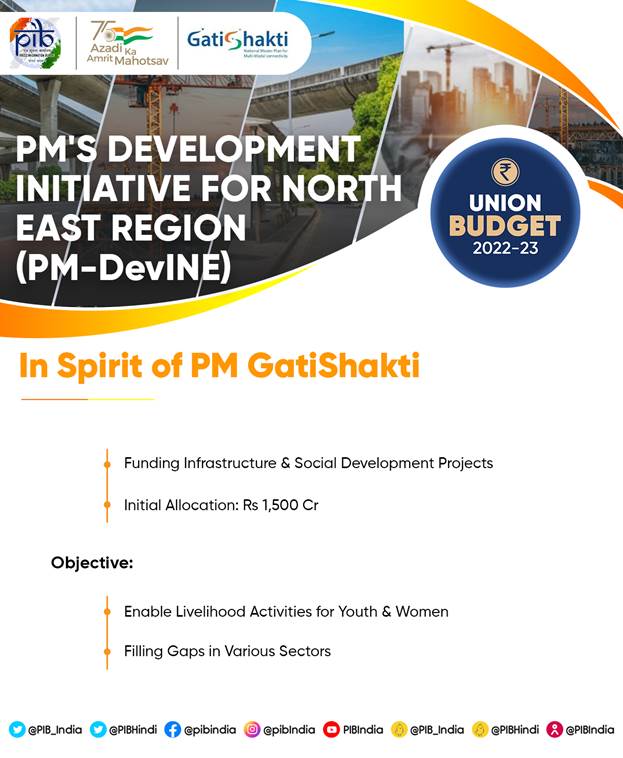
- 07 Dec 2024
In News:
Prime Minister’s Development Initiative for North East Region (PM-DevINE) was announced as a new Central Sector scheme, with 100% Central funding in the Union Budget 2022-23 with initial outlay of Rs.1500 crore.
PM-DevINE Scheme:
- Launched in 2022 as a Central Sector scheme, with 100% Central funding.
- Initial outlay: Rs. 1500 crore in the Union Budget 2022-23.
- Total outlay: Rs. 6600 crore for the period from FY 2022-23 to FY 2025-2026, approved by the Union Cabinet on 12 October 2022.
- Objectives:
- Fund infrastructure projects in the spirit of PM Gati Shakti.
- Support social development projects tailored to the felt needs of the NER.
- Enable livelihood opportunities for youth and women.
- Address development gaps in various sectors.
- 35 projects worth Rs. 4857.11 crore have been sanctioned under the scheme up to 30 November 2024, including 7 projects from the Union Budget 2022-23.
Industrialization Initiatives:
- North East Industrial Development Scheme (NEIDS):
- Launched on 1 April 2017, ended on 31 March 2022.
- Aimed at promoting industrialization in the NER.
- UNNATI Scheme:
- Launched on 9 March 2024 for enhancing regional infrastructure and promoting industrial growth.
- Provides specific incentives to industries, including:
- Capital Investment Incentive.
- Capital Interest Subvention.
- Manufacturing & Services Linked Incentive.
Budgetary Allocation for NER Development:
- Non-exempt Union Ministries/Departments are mandated to allocate at least 10% of their annual Gross Budgetary Allocation towards NER development.
- Between 2019-20 and 2023-24, these Ministries/Departments have incurred Rs. 3,53,412 crore towards the development of NER.
Role of State Governments and Central Support:The Government of India supplements state efforts with various schemes to promote industrialization and infrastructure development in the NER.
The PM-DevINE scheme, along with initiatives like UNNATI and the allocation of substantial funds by the central government, aims to accelerate the holistic development of NER. These efforts focus on infrastructure, social development, and industrialization, with specific emphasis on youth and women empowerment, ensuring long-term growth and prosperity for the region.
China Plus OneStrategy
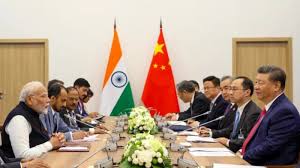
- 07 Dec 2024
In News:
India had ‘limited success’ in capturing ‘China Plus One’ opportunity.
Limited Success in ‘China Plus One’ Strategy:
- India has had limited success in attracting multinational companies looking to diversify their supply chains under the ‘China Plus One’ strategy, aimed at reducing dependence on China.
- Vietnam, Thailand, Cambodia, and Malaysia have been more successful in benefiting from this shift due to factors like lower labor costs, simplified tax laws, and proactive Free Trade Agreements (FTAs).
Geopolitical Context - US-China Trade Conflict:
- The fresh US-China trade conflict involves tit-for-tat restrictions, with the US imposing export controls on Chinese high-tech goods and China retaliating by banning key materials.
- India's Position: As a "connecting economy" not directly aligned with the US or China, India stands to benefit from trade diversions arising from this conflict.
Opportunities for India Amid Trade Diversion:
- NITI Aayog CEO BVR Subrahmanyam highlighted opportunities arising from trade diversion, particularly due to US trade policies under President-elect Donald Trump, which could potentially create an economic boom for India.
- India has opportunities to capture a larger share of the global trade, especially in sectors where it currently holds a small market share (less than 1% of world trade in many areas).
Trade Policy Challenges:
- Steel Import Duty Proposal: NITI Aayog Vice Chairperson cautioned against imposing high duties on steel imports, arguing that it could reduce India’s competitiveness and lead to negative consequences for domestic industries reliant on steel.
- The global steel market has been affected by oversupply from China, with India’s iron and steel exports experiencing a sharp decline in Q1 FY25 due to weak domestic demand.
Impact of US Tariffs:
- A general 10% tariff on all imports by the US would not have a major negative impact on India.
- However, a 60% tariff on China could open significant opportunities for India, especially in sectors where it competes directly with China. There might be short-term shocks but long-term benefits.
Ongoing Trade Fragmentation:
- The report noted that trade fragmentation is driven by strict export controls on Chinese goods, implemented by the US to curb China’s growth, particularly in high-tech sectors.
Sectoral Competitiveness:
- While China remains India's key competitor across most export sectors, countries like Brazil, Indonesia, and South Africa generally lag behind India.
- Malaysia and Thailand outperform India in select sectors such as electrical machinery.
Challenges in the EU Market - Carbon Border Adjustment Mechanism (CBAM):
- Iron and steel industry facehigh exposure under the CBAM for EU exports, with tariffs potentially rising by 20-35% due to carbon emissions-related regulations.
- Indian firms could experience higher compliance costs due to the requirement for detailed emissions reporting, impacting competitiveness in the European market.
‘Anna Chakra’ and SCAN Portal

- 07 Dec 2024
In News:
The Union Minister of Consumer Affairs, Food and Public Distribution and New & Renewable Energy, launched ‘Anna Chakra’, the Public Distribution System (PDS) Supply chain optimisation tool and SCAN (Subsidy Claim Application for NFSA) portal a significant step towards modernizing the Public Distribution System and subsidy claim mechanisms of the States.
Anna Chakra: PDS Supply Chain Optimization Tool
- Purpose: A tool developed to enhance the efficiency of PDS logistics across India, optimizing food grain transportation.
- Collaboration: Developed by the Department of Food and Public Distribution, in collaboration with the World Food Programme (WFP) and IIT-Delhi’s Foundation for Innovation and Technology Transfer (FITT).
- Functionality: Uses advanced algorithms to identify optimal transportation routes for food grains.
- Key Features:
- Efficiency and Cost Savings: Achieves annual savings of Rs 250 crores by reducing fuel consumption, time, and logistics costs.
- Environmental Impact: Reduces transportation-related emissions by cutting transportation distance by 15-50%, contributing to a smaller carbon footprint.
- Wide Coverage: Impacts 30 states, 4.37 lakh Fair Price Shops (FPS), and 6,700 warehouses in the PDS supply chain.
- Technology Integration: Linked with the Freight Operations Information System (FOIS) of Railways and PM Gati Shakti platform, enabling geo-location mapping of FPS and warehouses.
SCAN Portal: Subsidy Claim Application for NFSA
- Objective: To streamline the subsidy claim process under the National Food Security Act (NFSA) 2013, ensuring better utilization of funds.
- Functionality: Provides a unified platform for states to submit food subsidy claims, reducing administrative complexity and delays.
- Key Features:
- Single Window Submission: Simplifies subsidy claim submission for states, enhancing coordination.
- Automated Workflow: End-to-end automation ensures efficiency, transparency, and faster settlements.
- Rule-Based Processing: Claims are scrutinized and approved through a rule-based system, speeding up the approval process.
Public Distribution System (PDS) Overview
- Purpose: Ensures food security by providing subsidized food grains to vulnerable populations under the NFSA, benefitting nearly 80 crore people.
- Management: A joint effort between the Central and State/UT Governments. The Food Corporation of India (FCI) handles procurement and transportation, while state governments manage local distribution.
- Commodities: Primarily wheat, rice, sugar, and kerosene, with some states also distributing pulses and edible oils.
Initiatives to Reform PDS in India
- One Nation One Ration Card (ONORC):
- Goal: To allow portability of ration cards, benefiting migrant workers and seasonal laborers.
- Features: Biometric authentication, digital payments, and enhanced inclusivity.
- SMART-PDS Scheme (2023-2026):
- Objective: To upgrade technology in PDS, including computerized FPS, point-of-sale (POS) machines, and GPS tracking for transparency and fraud reduction.
- Aadhaar and Direct Benefit Transfer (DBT):
- Purpose: Ensures proper beneficiary identification and cash transfers, allowing beneficiaries to purchase grains from the open market.
- Technology and Transparency Enhancements:
- GPS and SMS Monitoring: Ensures the proper delivery of food grains to FPS and provides citizens with updates via SMS.
PMeVIDYA DTH 24x7 Channel No. 31
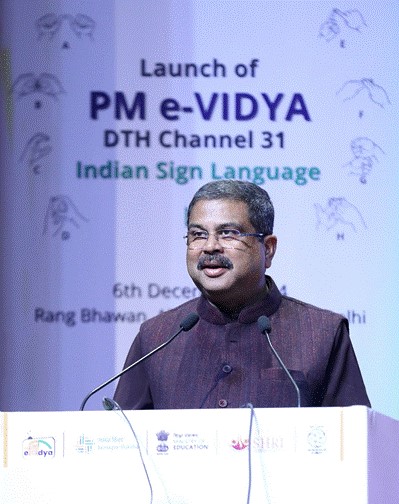
- 07 Dec 2024
In News:
Union Minister for Education, launched the PMeVIDYA DTH 24x7 Channel No. 31 dedicated to Indian Sign Language (ISL) on December 6, 2024, in New Delhi.
Channel Purpose and Vision:
- Objective: To bridge the communication gap between the hearing-impaired and hearing populations by promoting ISL.
- Significance: Channel 31 aims to unlock talent and ensure equal opportunities for all, making society more inclusive and progressive.
- ISL's Role: Pradhan emphasized the importance of alternative communication methods like ISL, which ensures that individuals with hearing impairments have equal access to education, employment, and societal participation.
Government's Focus on Inclusivity:
- Legal Framework: Pradhan highlighted the expansion of recognized disabilities from 7 to 21, making the legal framework more comprehensive.
- National Education Policy (NEP) 2020: The policy focuses on inclusive education, with particular attention to Children with Special Needs (CwSN). The NEP promotes the standardization of ISL and its inclusion in educational curricula.
- Employment and Cultural Expression: ISL is not only essential for communication but also contributes to cultural expressions like dance and drama. Pradhan emphasized that learning ISL would open employment opportunities and allow individuals to express themselves fully.
Importance of Channel 31:
- The launch of Channel 31 aligns with India’s commitment to ensuring equal rights and access to education, as enshrined in the Constitution.
- Pradhan urged for widespread adoption of ISL, ensuring that more people learn the language to better support the hearing-impaired community.
PM e-Vidya Initiative:
- Launch Date: PM e-Vidya was launched as part of the Atmanirbhar Bharat Abhiyaan on May 17, 2020, to bridge the digital divide and ensure inclusive education.
- Key Components:
- DIKSHA: A national platform providing e-content for all grades.
- DTH TV Channels: Initially started with 12 channels, now expanded to 200, offering supplementary education in multiple languages.
- SWAYAM: A platform for online courses and MOOCs for both school and higher education.
- Community Radio & Podcasts: These platforms are used for wider educational outreach, especially in rural and remote areas.
- e-Content for Teachers: Interactive videos and resources aimed at enhancing teacher education.
Channel Content:
- Channel 31 will provide 24x7 educational content for children with hearing impairments, teachers, and other stakeholders.
- The content will include school curricula, career guidance, skill training, mental health support, and promotion of ISL as a subject.
- The content will be available on YouTube, increasing its reach and accessibility.
RBI Cuts CRR, Keeps Repo Rate Unchanged

- 07 Dec 2024
In News:
The Reserve Bank of India (RBI) has recently made significant monetary policy decisions that could have a broad impact on the economy.
Key Highlights:
Cut in Cash Reserve Ratio (CRR)
- CRR Reduction: The RBI has reduced the CRR by 50 basis points (bps), from 4.5% to 4%.
- Impact on Banks: This move will free up ?1.16 lakh crore in liquidity, which banks can use to lend, boosting the credit flow in the economy.
- Objective: The CRR cut is aimed at easing the liquidity stress in the financial system, which has been tightening due to RBI's foreign exchange interventions.
- Bank Benefits: Banks will benefit as they don’t earn interest on the CRR, and the extra liquidity may help them reduce deposit rates. Additionally, it may encourage banks to pass on benefits to borrowers, particularly in terms of lending rates.
Repo Rate Kept Unchanged at 6.5%
- Decision: The MPC decided to keep the key policy rate, the Repo rate, unchanged at 6.5%, continuing its stance for the 11th consecutive meeting.
- Reasons for Keeping Repo Rate Steady:
- Persistent inflation, particularly food prices, is a key concern. Despite strong growth in sectors like rural consumption, inflation remains high and continues to affect disposable income.
- RBI Governor emphasized that durable price stability is essential for strong, sustained economic growth.
Impact on Borrowers
- Borrowing Costs: With the Repo rate unchanged, external benchmark lending rates (EBLR) linked to the Repo rate will not rise, providing relief to borrowers by keeping Equated Monthly Installments (EMIs) stable.
- Deposit Rates: However, the CRR cut may lead to a marginal reduction in deposit rates due to increased liquidity in the system.
Economic Growth Forecast Adjusted
- Reduced GDP Growth Estimate: The RBI has downgraded the GDP growth forecast for FY25 to 6.6%, down from the earlier estimate of 7.2%. This revision comes after the economy showed signs of slowdown in the second quarter of FY25.
- Growth Outlook: Despite the downgrade, the RBI remains cautiously optimistic about recovery driven by festive demand and rural consumption. Governor Das indicated that the slowdown had likely bottomed out and the economy is set to recover in the coming quarters.
Inflation Forecast Raised
- Inflation Outlook: The inflation estimate for FY25 has been revised upward to 4.8%, compared to the earlier forecast of 4.5%. This is largely due to rising food prices, which surged to a 14-month high of 6.21% in October.
- Inflationary Pressures: The MPC noted that inflation has remained above the RBI’s target of 4%, primarily driven by food inflation. As inflation impacts consumption, the RBI aims to balance growth support with inflation management.
Monetary Policy Stance
- Neutral Stance Retained: The RBI has maintained a ‘neutral’ stance, meaning it is neither tightening nor easing monetary policy drastically, focusing instead on bringing inflation closer to its target of 4%.
- Inflation Control: While the RBI is aware of the economic slowdown, it continues to prioritize inflation control to ensure price stability and support sustainable growth.
Global and Domestic Economic Context
- Global Factors: The RBI has also been cautious about global developments, including capital outflows and the impact of U.S. monetary policy on the Indian economy. A rate cut could have further weakened the rupee by narrowing the interest rate differential with the U.S.
- Domestic Concerns: Domestically, the economy faces challenges such as weak manufacturing growth and high inflation. The GDP growth in Q2 FY25 dropped to 5.4%, a seven-quarter low, highlighting concerns over demand and inflationary pressures.
BharatiyaVayuyanVidheyak Bill, 2024
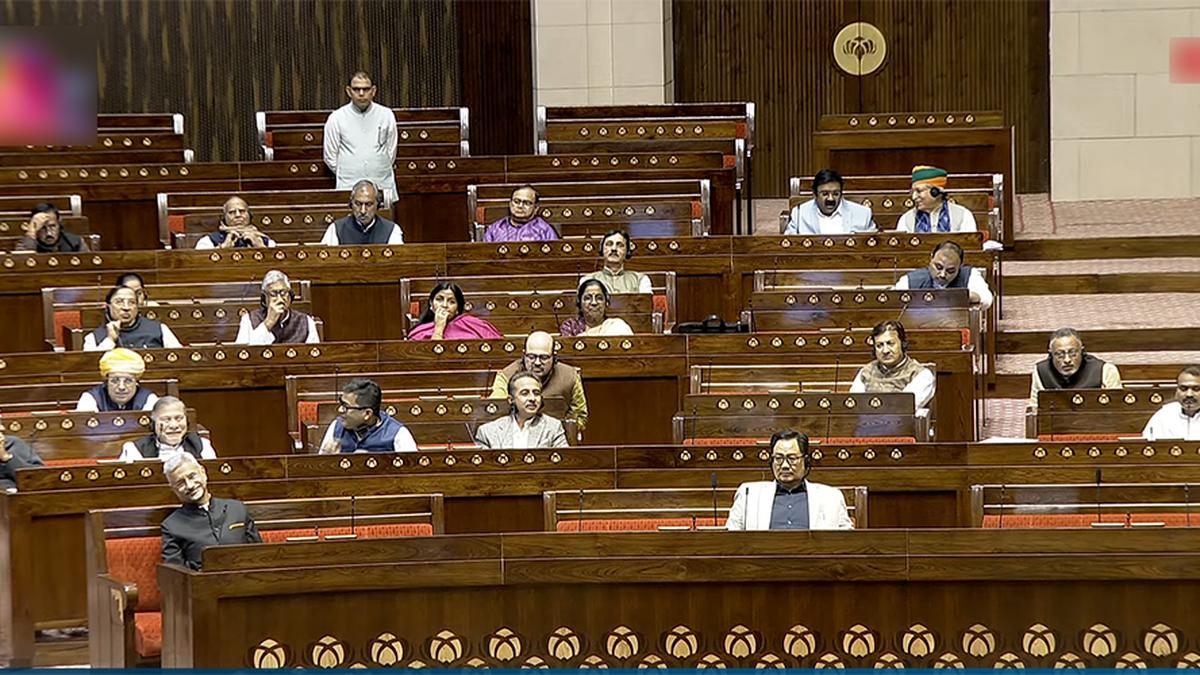
- 06 Dec 2024
In News:
In a significant move, the Indian Parliament passed the BharatiyaVayuyanVidheyak Bill, 2024 on December 5, 2024, bringing much-needed reforms to the aviation sector. The Bill, which replaces the Aircraft Act of 1934, aims to streamline aviation regulations and improve the ease of doing business in the industry.
Key Highlights of the BharatiyaVayuyanVidheyak Bill, 2024:
- Single-Window Clearance for Aviation Personnel: One of the major changes is the transfer of responsibility for the Radio Telephone Operator Restricted (RTR) certification from the Department of Telecom (DoT) to the Directorate General of Civil Aviation (DGCA). This move consolidates the certification process under a single authority, making it easier for aviation personnel like pilots, engineers, and flight dispatchers to obtain their licenses.
- Regulation of Aircraft Design: The Bill not only retains provisions for regulating aircraft manufacturing, maintenance, and repair, but also introduces new provisions to regulate aircraft design and the places where aircraft are designed.
- Enhanced Penalties for Violations: The Bill specifies severe penalties for violations, such as dangerous flying, carrying prohibited items (like arms or explosives), or littering near airports. Offenders may face imprisonment up to three years, fines up to ?1 crore, or both.
- Introduction of Second Appeal Mechanism: For the first time, the Bill introduces a second appeal process against decisions of regulatory bodies like the DGCA and BCAS, ensuring further scrutiny of decisions related to penalties.
- Improved Licensing Process: The shift of the RTR certification process from the DoT to DGCA aims to curb allegations of corruption associated with the previous system, where candidates often had to pay bribes to clear exams.
Organizational Setup and Authorities:
The Bill outlines the establishment of three key authorities under the Ministry of Civil Aviation:
- DGCA: Responsible for civil aviation safety, licensing, and ensuring compliance with international standards.
- BCAS: Ensures aviation security and develops relevant security measures.
- AAIB: Investigates aviation accidents and incidents.
The central government retains supervision over these bodies, with the power to modify or review their orders.
Criticisms and Concerns:
- Lack of Autonomy for DGCA: The DGCA, unlike independent regulators in other sectors (such as telecom or insurance), operates under direct government supervision. The lack of clear qualifications, selection process, and tenure for the DGCA Director General has raised concerns about the regulator's independence.
- Unilateral Appointment of Arbitrators: The Bill empowers the government to unilaterally appoint an arbitrator in certain cases, which has been criticized for potentially violating the right to equality under Article 14 of the Constitution. The Supreme Court has previously ruled that such unilateral appointments may be unconstitutional.
- Discretionary Criminal Penalties: The central government is granted the discretion to impose criminal penalties for rule violations, which some argue could undermine the principle of separation of powers, as it is the legislature's role to define criminal offenses and penalties.
- Exclusionary Hindi Title: Some critics argue that the Hindi title of the Bill may alienate non-Hindi-speaking populations, which make up a significant portion of India’s demographic.
Hornbill Festival
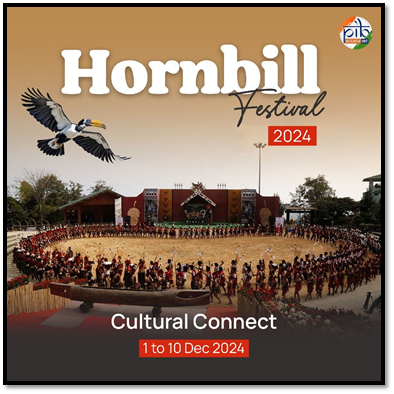
- 06 Dec 2024
In News:
The Hornbill Festival, a vibrant celebration of Nagaland's culture and tourism, is an annual event that takes place from December 1 to 10.
About the Hornbill Festival:
- Origin: First held in the year 2000.
- Purpose: The festival aims to foster inter-tribal communication, preserve the cultural heritage of Nagaland, and showcase the harmonious blending of traditional and modern elements.
- Significance: Referred to as the “festival of festivals,” it has become an essential part of the state’s cultural calendar.
- Organizers: It is organized by the Tourism and Art & Culture Departments of the Government of Nagaland.
- Location: The festival takes place annually at the Naga Heritage Village in Kisama, located about 12 kilometers from Kohima.
- Cultural Showcase: Over the years, it has evolved into a significant celebration that highlights the vibrant and diverse cultural traditions of the various tribes in Nagaland.
- Name Origin: The festival is named after the Hornbill bird, which holds cultural importance among the Naga tribes.
- Theme of the 2024 Hornbill Festival:The 2024 edition is themed “Cultural Connect,” celebrating the rich heritage and cultural diversity of Nagaland. The festival continues to merge modernity and tradition through a variety of activities, including Naga wrestling, traditional archery, food stalls, fashion shows, beauty contests, and musical performances. Additionally, the Archives Branch is presenting a special exhibition titled “Naga-Land & People in Archival Mirror” in partnership with the National Archives of India, offering a deeper look at the region's history and cultural practices.
- Recent Milestone:This year marks the 25th anniversary of the Hornbill Festival.
Festival Highlights:
- Annual Event: Held each year since its inception in 2000, it serves as a major cultural event for Nagaland.
- Symbolism: Named after the Hornbill bird, which represents boldness and grandeur in Naga folklore.
- Location: The festival is hosted at Kisama Heritage Village, a cultural center that preserves Naga traditions with 17 indigenous houses (Morungs) that represent each of the tribes.
- Cultural Diversity: Nagaland, known as the “Land of Festivals,” is home to 17 major tribes, each with its distinct festivals and cultural practices. The Hornbill Festival promotes inter-tribal interaction and celebrates the state’s rich heritage.
- National Significance: Reflecting India’s unity in diversity, the festival serves as a platform for different cultural practices to coexist, strengthening the nation’s collective identity.
India and Slovenia Announce Five-Year Collaboration Plan
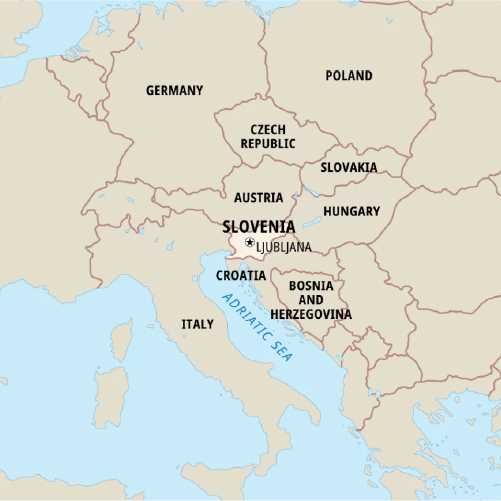
- 06 Dec 2024
In News:
India and Slovenia have announced a five-year scientific collaboration plan (2024-2029) to deepen ties in research and technology. The Programme of Cooperation (PoC) was finalized during a meeting between Dr. Jitendra Singh (Indian Minister for Science and Technology) and Dr. Igor Papi? (Slovenian Minister for Higher Education, Science, and Innovation) on December 5, 2024.
Key Highlights:
- Joint Research Focus: The collaboration will focus on hydrogen technologies, sustainable innovation, AI, renewable energy, and smart cities.
- Over 20 Successful Projects: More than 20 joint initiatives in sectors like health, AI, and energy have already been implemented.
- Future Areas of Collaboration: New research projects will be launched, further strengthening academic exchanges and scientific networks between the countries.
- Hydrogen Technologies: Both ministers emphasized hydrogen's role in global energy sustainability, marking it as a critical area for future research.
- Historical Partnership: This builds on a partnership dating back to a 1995 agreement, with initiatives like the Joint Working Group on Scientific and Technological Cooperation.
What is the Programme of Cooperation (PoC)?
- The Programme of Cooperation (PoC) is a formal agreement between two countries designed to enhance collaboration in specific sectors, such as science, technology, and innovation.
- In the case of India and Slovenia, the PoC for the period 2024–2029 aims to promote joint research efforts, academic exchanges, and partnerships in emerging fields like hydrogen technologies, sustainable innovation, and other transformative areas.
- The PoC serves as a structured framework for long-term cooperation, enabling both nations to develop networks among scientists and researchers while addressing global challenges through collaborative innovation.
PM Surya Ghar: Muft Bijli Yojana
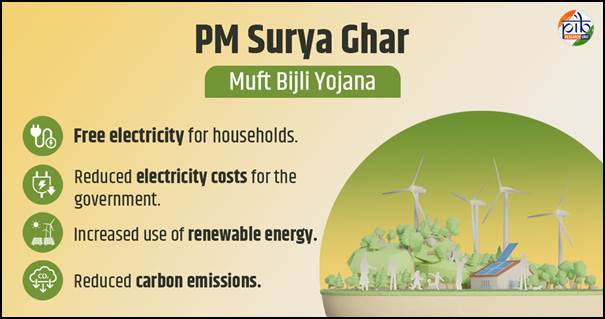
- 06 Dec 2024
In News:
The PM Surya Ghar: Muft Bijli Yojana, the world’s largest domestic rooftop solar initiative, is transforming India’s energy landscape with a bold vision to supply solar power to one crore households by March 2027.
Key Details:
Targeted Installations:
- 10 lakh installations by March 2025.
- 1 crore installations by March 2027.
Subsidy and Financing:
- Offers up to 40% subsidy for rooftop solar installations based on household electricity consumption.
- Collateral-free loans available for up to 3 kW solar systems at a 7% interest rate.
Key Benefits:
The PM Surya Ghar: Muft Bijli Yojana offers several significant benefits to participating households:
- Free Electricity for Households: The scheme provides households with free electricity through the installation of subsidized rooftop solar panels, significantly reducing their energy costs.
- Reduced Electricity Costs for the Government: By promoting the widespread use of solar power, the scheme is expected to save the government an estimated ?75,000 crore annually in electricity costs.
- Increased Use of Renewable Energy: The scheme encourages the adoption of renewable energy sources, contributing to a more sustainable and environmentally friendly energy mix in India.
- Reduced Carbon Emissions: The transition to solar energy under this scheme will help lower carbon emissions, supporting India's commitment to reducing its carbon footprint.
Eligibility Criteria:
1. The applicant must be an Indian citizen.
2. Must own a house with a roof that is suitable for installing solar panels.
3. The household must have a valid electricity connection.
4. The household must not have availed of any other subsidy for solar panels.
Impact
The PM Surya Ghar: Muft Bijli Yojana is expected to have far-reaching outcomes, both for individual households and the nation as a whole:
- Household Savings and Income Generation: Households will benefit from significant savings on their electricity bills. Additionally, they will have the opportunity to earn extra income by selling surplus power generated by their rooftop solar systems to DISCOMs. For instance, a 3-kW system can generate over 300 units per month on average, providing a reliable source of energy and potential revenue.
- Expansion of Solar Capacity: The scheme is projected to add 30 GW of solar capacity through rooftop installations in the residential sector, significantly contributing to India's renewable energy goals.
- Environmental Benefits: Over the 25-year lifetime of these rooftop systems, it is estimated that the scheme will generate 1000 BUs of electricity while reducing CO2 emissions by 720 million tonnes, making a substantial positive impact on the environment.
- Job Creation: The scheme is also expected to create approximately 17 lakh direct jobs across various sectors, including manufacturing, logistics, supply chain, sales, installation, operations and maintenance (O&M), and other services, thereby boosting employment and economic growth in the country.
Model Solar Village
- Under the "Model Solar Village" component of the scheme, the focus is on establishing one Model Solar Village per district throughout India.
- This initiative aims to promote solar energy adoption and empower village communities to achieve energy self-reliance.
- An allocation of ?800 crore has been designated for this component, with ?1 crore provided to each selected Model Solar Village.
- To qualify as a candidate village, it must be a revenue village with a population of over 5,000 (or 2,000 in special category states). Villages are selected through a competitive process, evaluated on their overall distributed renewable energy (RE) capacity six months after being identified by the District Level Committee (DLC).
- The village in each district with the highest RE capacity will receive a central financial assistance grant of ?1 crore.
- The State/UT Renewable Energy Development Agency, under the supervision of the DLC, will oversee the implementation, ensuring these model villages successfully transition to solar energy and set a benchmark for others across the country.
RangeenMachli App
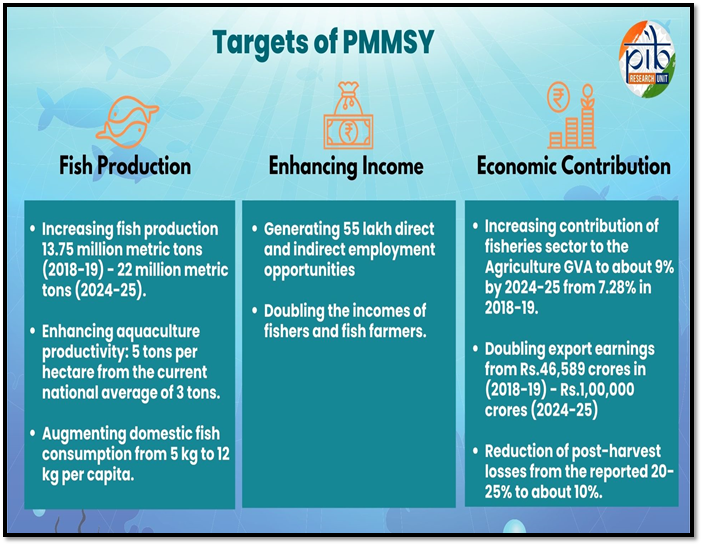
- 06 Dec 2024
In News:
The app was developed by the ICAR-Central Institute of Freshwater Aquaculture (ICAR-CIFA) with support from the Pradhan Mantri MatsyaSampada Yojana (PMMSY) under the Ministry of Fisheries, Animal Husbandry & Dairying, Government of India.
Key Highlights:
- Target Audience: The app caters to hobbyists, farmers, and professionals in the ornamental fish industry.
- Multilingual Support: The app offers content in eight Indian languages, making it accessible to a broad and diverse audience.
- Main Objectives:
- Provide information on popular ornamental fish species and their care.
- Promote local aquarium businesses through dynamic directories.
- Enhance knowledge of ornamental aquaculture techniques for fish farmers and shop owners.
- Serve as an educational tool for newcomers and professionals in the ornamental fish industry.
- Salient Features:
- Multilingual Content: Ensures broader reach and user accessibility.
- Comprehensive Fish Information: Offers detailed guidance on fish care, breeding, and maintenance.
- Find Aquarium Shops Tool: A directory updated by shop owners, helping users find reliable local aquarium shops and promoting local businesses.
- Educational Modules:
- Basics of Aquarium Care: Covers key aspects like aquarium types, filtration, lighting, feeding, and maintenance.
- Ornamental Aquaculture: Focuses on breeding and rearing ornamental fish, particularly for farmers.
- Economic and Social Impact:
- Promoting Local Businesses: The app encourages economic growth by increasing visibility for local aquarium shops and creating opportunities for business owners.
- Authenticity and Reliability: Users can access verified information, reducing the reliance on unverified sources and promoting healthier aquariums.
- Sustainability and Growth: The app’s features are designed to foster sustainability and growth in the ornamental fish trade by providing reliable information and empowering users.
Pradhan Mantri MatsyaSampada Yojana (PMMSY):
- Objective: Aimed at transforming the fisheries sector, improving fish production, productivity, quality, technology, infrastructure, and management, while strengthening the value chain and promoting the welfare of fishers.
- Launch: The scheme was launched in 2020 with an investment of Rs. 20,050 crores for a 5-year period (2020-21 to 2024-25).
- Focus Areas:
- Inland fisheries and aquaculture.
- Fisheries management and regulatory framework.
- Infrastructure and post-harvest management.
- Doubling fishers' and fish farmers' incomes.
- Components:
- Central Sector Scheme (CS): Fully funded by the central government.
- Centrally Sponsored Scheme (CSS): Partially funded by the central government and implemented by states.
- Sub-Schemes:
- Pradhan Mantri MatsyaKisanSamridhiSah-Yojana (PM-MKSSY): Launched under PMMSY to formalize the fisheries sector and support micro and small enterprises with over Rs. 6,000 crore investment (FY 2023-24 to 2026-27).
- Beneficiaries: Includes fishers, farmers, fish vendors, fisheries cooperatives, SC/STs, women, differently-abled persons, state and central entities, and private firms.
Fisheries Sector Contribution:
- Supports around 30 million people.
- India is the 3rd largest fish producer globally, with a fish production of 175.45 lakh tons in FY 2022-23.
- Contributes 1.09% to the Gross Value Added (GVA) of India and 6.72% to agricultural GVA.
Related Schemes:
- Fisheries and Aquaculture Infrastructure Development Fund (FIDF): Launched with a fund of Rs. 7,522.48 crore.
- Kisan Credit Card (KCC): Extended to fishers and farmers from FY 2018-19.
- Sustainable fisheries development.
- Doubling income and job creation in the sector.
- Boosting exports and agricultural GVA.
- Social and economic security for fishers.
Trade Watch Quarterly
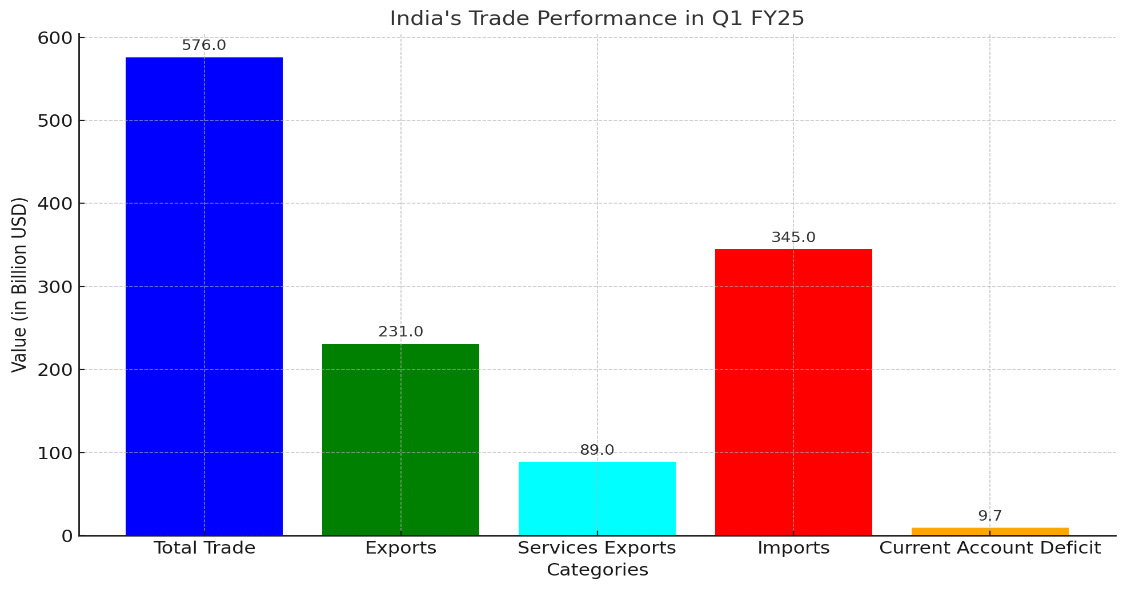
- 05 Dec 2024
In News:
NITI Aayog released its first quarterly report, Trade Watch Quarterly (TWQ), on December 4, 2024, focusing on India's trade developments during Q1 FY2024 (April-June).
Overview:
- Purpose: The publication aims to provide a comprehensive analysis of India’s trade performance, highlighting key trends, challenges, and opportunities.
- Target: To leverage insights for evidence-based policy interventions and foster informed decision-making, contributing to sustainable growth in India’s trade.
Trade Performance Highlights (Q1 FY24):
- Total Trade: $576 billion (5.45% YoY growth).
- Merchandise Exports: Growth was restrained due to declines in iron & steel, and pearls.
- Imports: Driven by high-value goods, including aircraft, spacecraft, mineral fuels, and vegetable oils.
- Services Exports: Displayed a surplus, particularly in IT services.
- Growth in Services Exports: A positive trend, rising by 10.09% YoY, particularly in IT services and business solutions.
Key Challenges for India’s Trade:
- Limited Success in China-Plus-One Strategy:Countries like Vietnam, Thailand, Malaysia have gained more from this strategy, benefitting from cheaper labor, simplified tax laws, and lower tariffs.
- CBAM (Carbon Border Adjustment Mechanism):Starting in 2026, CBAM will impose carbon taxes on imports like cement, steel, and fertilizers. India’s iron and steel industry could face significant risks due to this.
- Declining Share in Labor-Intensive Sectors:India’s global market share in labor-intensive sectors (e.g., textiles, leather) has declined despite a strong workforce.
- Geopolitical Instability (West Asia):
- Oil price hikes could increase India’s Current Account Deficit (CAD) and fuel inflation.
- Declining agricultural exports to markets like Iran further add to the challenges.
Strategic Recommendations for Overcoming Challenges:
- Infrastructure Modernization:
- Expansion of digital platforms like Trade Connect e-Platform to streamline processes and support exporters.
- Strengthening logistics via the National Logistics Policy.
- Export Incentives:Continuation of schemes like RoDTEP (Remission of Duties and Taxes on Exported Products) to maintain export competitiveness.
- Technological Integration:Leveraging digital trade to tap into high-growth sectors and foster innovation in trade.
- Strengthening FTAs (Free Trade Agreements):Focus on negotiating strategic FTAs with global partners (e.g., the UK and the EU) to reduce trade barriers and enhance global market access.
Geopolitical and Environmental Risks:
- U.S.-China Trade Tensions:Offers opportunities for India to diversify its supply chains, but also poses challenges in terms of overdependence on certain countries.
- Impact of CBAM:Risk to carbon-intensive Indian exports like steel and aluminium, which will face tariffs starting in 2026.
Sectoral Performance:
- Growing Sectors:
- IT Services: India’s market share of IT services reached 10.2%, continuing to be a strong contributor.
- Pharmaceuticals, Electrical Machinery, and Mineral Fuels: Significant contributors to export growth.
- Declining Sectors:Labor-Intensive Goods: Declines in global market share for textiles, pearls, and leather.
Pathway to $2 Trillion Exports by 2030:
- India's Export Aspirations:To achieve the target of $2 trillion in exports by 2030, India must address structural inefficiencies, diversify exports, and reduce trade barriers.
- Vision 2047:Aligning with India’s broader vision to become a developed nation, the report stresses the importance of strengthening trade, technology, and infrastructure to realize these ambitions.
- Trade's Role in Economic Growth:
- Trade is vital to India’s economic trajectory, contributing significantly to GDP growth.
- Through evidence-based policymaking, infrastructure modernization, and strategic global partnerships, India can achieve sustained growth in trade, leading to the realization of a Viksit Bharat (Developed India) by 2047.
Heat Shock Protein 70
- 05 Dec 2024
In News:
JNU scientists make big discovery that could change malaria, Covid-19 treatment.
Overview of the Discovery:
- Institution: Jawaharlal Nehru University (JNU), Special Centre for Molecular Medicine.
- Key Discovery: Identification of human protein Hsp70 as a critical factor in the spread of malaria and COVID-19.
- Research Collaboration: Involvement of Indian and Russian researchers.
- Outcome: Development of a small molecule inhibitor of Hsp70 that could act as a broad-spectrum treatment for multiple infections.
About Heat Shock Protein 70 (Hsp70):
- Definition: Hsp70 is a type of molecular chaperone protein.
- Function:
- Helps other proteins fold into their proper shapes.
- Prevents protein misfolding.
- Regulates protein synthesis and protects proteins from stress.
- Elevates during cellular stress to shield cells from damage.
- Role in Cellular Processes:
- Prevents protein aggregation and assists in protein transport across membranes.
- Plays a critical role in protein homeostasis and cell survival during stress conditions.
Hsp70's Role in Disease Spread:
- SARS-CoV-2 (COVID-19) Interaction:
- Hsp70 interacts with the spike protein of SARS-CoV-2 and human ACE2 receptors.
- Facilitates viral entry into human cells by stabilizing this interaction during fever (when Hsp70 levels rise).
- Malaria:Pathogens like malaria parasites rely on the host's machinery for survival, including Hsp70.
Research Findings and Implications:
- Published in: International Journal for Biological Macromolecules.
- Inhibition of Hsp70:
- Targeting Hsp70 can disrupt viral replication.
- In lab tests, Hsp70 inhibitor (PES-Cl) blocked SARS-CoV-2 replication at low doses.
- Potential for Broad-Spectrum Treatment:
- Hsp70 could be a target for treating multiple infections, not limited to COVID-19 or malaria.
- Prevention of Drug Resistance:
- Host-targeting antivirals are less prone to resistance as the virus cannot mutate the host protein (Hsp70).
- This approach could be especially beneficial for combating rapidly evolving viruses like SARS-CoV-2 and its variants (e.g., Omicron).
Host-Targeting Approach vs. Traditional Drugs:
- Host-Targeting: Targets the host cell machinery (e.g., Hsp70) rather than the virus itself.
- Reduces the likelihood of viral mutation-induced resistance.
- Traditional Drugs: Target the virus directly, which can lead to resistance, especially with rapidly mutating viruses.
Global Health and Pandemic Preparedness:
- Universal Tool for Infectious Diseases: The discovery could serve as a universal tool for managing infections during health emergencies.
- Collaboration and Importance: Highlights the significance of international collaboration in addressing global health challenges (e.g., Dr. Pramod Garg of AIIMS, Ph.D. scholar Prerna Joshi).
- Future Implications:Preparation for future pandemics, as the world must remain vigilant even post-COVID-19.
Donald Trump's Threat on BRICS and US Dollar
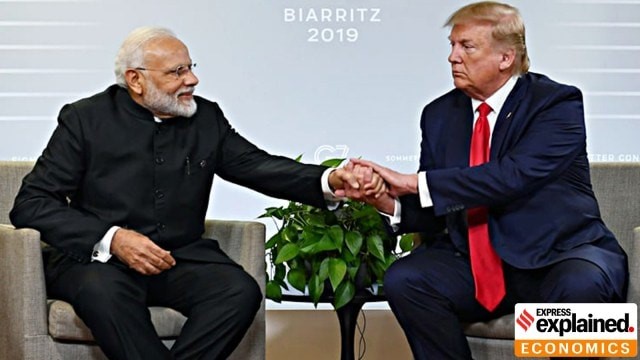
- 05 Dec 2024
In News:
- US President-elect Donald Trump threatens BRICS countries (Brazil, Russia, India, China, South Africa) with 100% import tariffs if they create a new currency or support an alternative to the US dollar as the global reserve currency.
- Trump emphasizes that attempts to undermine the US dollar’s dominance will face economic retaliation, asserting the US economy won’t tolerate such moves.
Background
- Weaponization of the Dollar: The US has increasingly used its financial influence to impose sanctions (e.g., Russia, Iran) and cut off countries from systems like SWIFT (Society for Worldwide Interbank Financial Telecommunication).
- Concerns: Countries are concerned about their vulnerability to US monetary policies, which can have global impacts (e.g., rising US interest rates causing economic instability in other countries).
Efforts to Reduce Dependence on the US Dollar
- BRICS Countries’ Initiatives:
- Russian President Putin criticizes the weaponization of the dollar.
- Brazil's President Lula advocates for a new BRICS currency to increase payment options and reduce vulnerabilities.
- India's Steps:
- The Reserve Bank of India (RBI) allows invoicing and payments in Indian rupees for international trade (since 2022), particularly with Russia.
- Prime Minister Modi supports increasing financial integration and cross-border trade in local currencies within BRICS.
- External Affairs Minister Jaishankar emphasizes the importance of mutual trade settlements in national currencies.
- China-Russia Trade: Over 90% of trade between Russia and China is settled in rubles and yuan due to their more balanced trade relations.
Internationalization of the Indian Rupee
- RBI's Role:
- In July 2022, RBI allowed export/import settlements in rupees, starting with Russia in December 2022.
- More than 19 countries, including the UK and UAE, have agreed to settle trade in rupees.
- Challenges:
- The Indian rupee currently accounts for only 1.6% of global forex turnover.
- India’s trade imbalance with Russia limits the effective use of rupee reserves.
- Indian banks are cautious due to the risk of US sanctions.
Global Trends in Currency Diversification
- Multipolarity in Finance: Emerging economies like China, India, and Brazil are advocating for a more decentralized financial system, moving away from US dominance.
- Declining Dollar Share: The US dollar’s share of global reserves is gradually decreasing, with non-traditional currencies like the Chinese yuan gaining ground.
Risks of Moving Away from the US Dollar
- Chinese Dominance: Concerns about increasing Chinese economic influence, especially within BRICS, as China pushes for more use of the yuan in trade.
- Liquidity and Volatility Issues: Alternatives to the dollar may face challenges like lower liquidity and increased exchange rate volatility.
- Implementation Challenges: Countries, especially those with trade imbalances, find it difficult to adopt local currencies for international trade.
Potential Impact of 100% US Tariff on BRICS Imports
- Global Trade Dynamics: A blanket tariff would likely encourage deeper intra-BRICS trade and accelerate the move towards de-dollarization.
- Impact on the US: Higher import costs for American consumers and potential trade diversification to third countries could hurt the US economy without revitalizing domestic manufacturing.
- Retaliation: BRICS countries might retaliate with tariffs on US goods, escalating trade tensions.
India’s Strategic Approach
- Diplomatic Engagement: India should clarify to the US that diversifying trade mechanisms is not anti-American but seeks financial stability and multipolarity.
- Leadership Role in BRICS: India should support financial reforms within BRICS that align with its interests while maintaining strong ties with the US.
- Promotion of Digital Currency: India should accelerate its Central Bank Digital Currency (CBDC) and strengthen international platforms like UPI to enhance its global financial presence.
International Debt Report 2024
- 05 Dec 2024
In News:
Recently released, World Bank’s "International Debt Report 2024" highlights a worsening debt crisis for developing nations, with 2023 marking the highest debt servicing levels in two decades, driven by rising interest rates and economic challenges.
Key Highlights:
Rising Debt Levels:
- Total external debt of low- and middle-income countries (LMICs) reached $8.8 trillion by the end of 2023, an 8% increase since 2020.
- For IDA-eligible countries (those receiving concessional loans from the World Bank), external debt rose by 18%, reaching $1.1 trillion.
Debt Servicing Costs:
- Developing nations paid a record $1.4 trillion in debt servicing costs (principal and interest) in 2023.
- Interest payments surged by 33%, totaling $406 billion, putting immense pressure on national budgets, especially in critical sectors like health, education, and environmental sustainability.
Interest Rate Increases:
- Interest rates on loans from official creditors doubled to 4% in 2023.
- Rates from private creditors rose to 6%, the highest in 15 years, exacerbating the financial burden on developing countries.
Impact on IDA-Eligible Countries:
- IDA countries faced severe financial strain, paying $96.2 billion in debt servicing, including $34.6 billion in record-high interest costs (four times higher than a decade ago).
- On average, 6% of their export earnings were allocated to debt payments, with some countries dedicating up to 38%.
Role of Creditors:
- Private creditors reduced lending, leading to more debt-servicing payments than new loans.
- In contrast, multilateral lenders like the World Bank provided additional support, with the World Bank contributing $28.1 billion.
- Multilateral institutions have emerged as crucial support systems, becoming "lenders of last resort" for poor economies.
Debt Data Transparency:
- Efforts to improve debt transparency led to nearly 70% of IDA-eligible economies publishing accessible public-debt data in 2023, a 20-point increase since 2020.
- Accurate debt data can reduce corruption and promote sustainable investment.
Global Financial Reforms:
- There is a growing call for global financial reforms to address the systemic challenges of developing nations facing rising debt burdens.
- Proposed measures include increased concessional financing, improved restructuring mechanisms, and the establishment of a Global Debt Authority for better debt management.
Impact on Climate and Development Goals:
- Debt servicing has become a larger financial burden than climate initiatives in many countries, with developing nations spending more on debt servicing than climate goals (2.4% of GDP vs. 2.1% for climate investments).
- To meet climate commitments under the Paris Agreement, climate investments would need to rise to 6.9% of GDP by 2030.
Debt Relief Initiatives:
- Programs like the Heavily Indebted Poor Countries (HIPC) Initiative and the Multilateral Debt Relief Initiative (MDRI) provide debt relief to the world’s poorest nations, helping them meet Sustainable Development Goals (SDGs).
- For instance, Somalia saved $4.5 billion in debt service after completing the HIPC program in December 2023.
Global Sovereign Debt Roundtable (GSDR):
- The GSDR brings together debtor nations and creditors (both official and private) to improve debt sustainability and address restructuring challenges.
- Co-chaired by the IMF, World Bank, and G20, the forum aims to find coordinated solutions for sovereign debt issues.
Overview of Global Plastic Treaty Negotiations
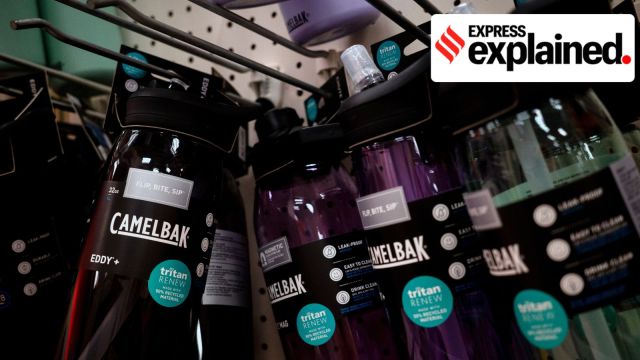
- 05 Dec 2024
In News:
The recent negotiations for a global treaty aimed at curbing plastic pollution, held in Busan, South Korea, concluded without reaching a legally binding agreement. This marked the fifth round of discussions since the United Nations Environment Assembly (UNEA) initiated the process in March 2022, with the goal of finalizing a treaty by the end of 2024. The failure to adopt a treaty was primarily due to disagreements over production cap goals and the elimination of specific plastic chemicals and products.
Key Points of Dispute
- Production Cap Goals: A coalition of over 100 countries, including many from Africa, Latin America, and the European Union, pushed for clear production cap goals in the treaty. They argued that such measures are essential for effective regulation of plastic pollution.
- Opposition from Oil-Producing Nations: Conversely, a group of “like-minded countries” such as Saudi Arabia, Kuwait, Russia, and Iran opposed these provisions. They contended that regulating production cuts exceeded the original mandate set by UNEA and could lead to trade restrictions disguised as environmental measures. India and China aligned with this coalition, emphasizing their concerns regarding economic impacts.
Draft Treaty Highlights
Despite the failure to finalize an agreement, discussions produced a draft text that included both consensus points and contentious issues:
- Consensus Points:
- Proposals for banning open dumping and burning of plastics.
- Definitions for various plastic types were suggested but lacked clarity on contentious terms like microplastics.
- Contentious Issues:
-
- The draft did not adequately address definitions for microplastics or recycling standards.
- References to single-use plastics were included but faced pushback from certain nations.
India’s Position
India articulated its stance focusing on several key areas:
- Development Rights: Emphasized the need for recognizing varying responsibilities among countries in managing plastic pollution while considering their developmental rights.
- Technical and Financial Support: Advocated for provisions ensuring technical assistance and financial support for developing nations to manage plastic waste effectively.
- Opposition to Production Caps: India opposed any articles that would impose caps on polymer production, arguing that such measures were not directly linked to reducing plastic pollution.
Future Steps
The negotiations will continue with plans to reconvene in 2025. In the meantime, global plastic production is projected to rise significantly, potentially tripling by 2050 if no urgent action is taken. The ongoing dialogue will need to address both environmental concerns and developmental needs to create a balanced approach toward managing plastic pollution globally.
Global Context and Initiatives
The need for a global treaty is underscored by alarming statistics:
- Over 462 million tons of plastic are produced annually, with a significant portion contributing to pollution.
- Microplastics have infiltrated ecosystems worldwide, affecting biodiversity and human health.
Countries like Rwanda and Austria have implemented successful measures to reduce plastic waste, serving as models for global efforts. Initiatives such as the UNDP Plastic Waste Management Program in India aim to enhance waste management practices while addressing environmental impacts.
SheSTEM 2024
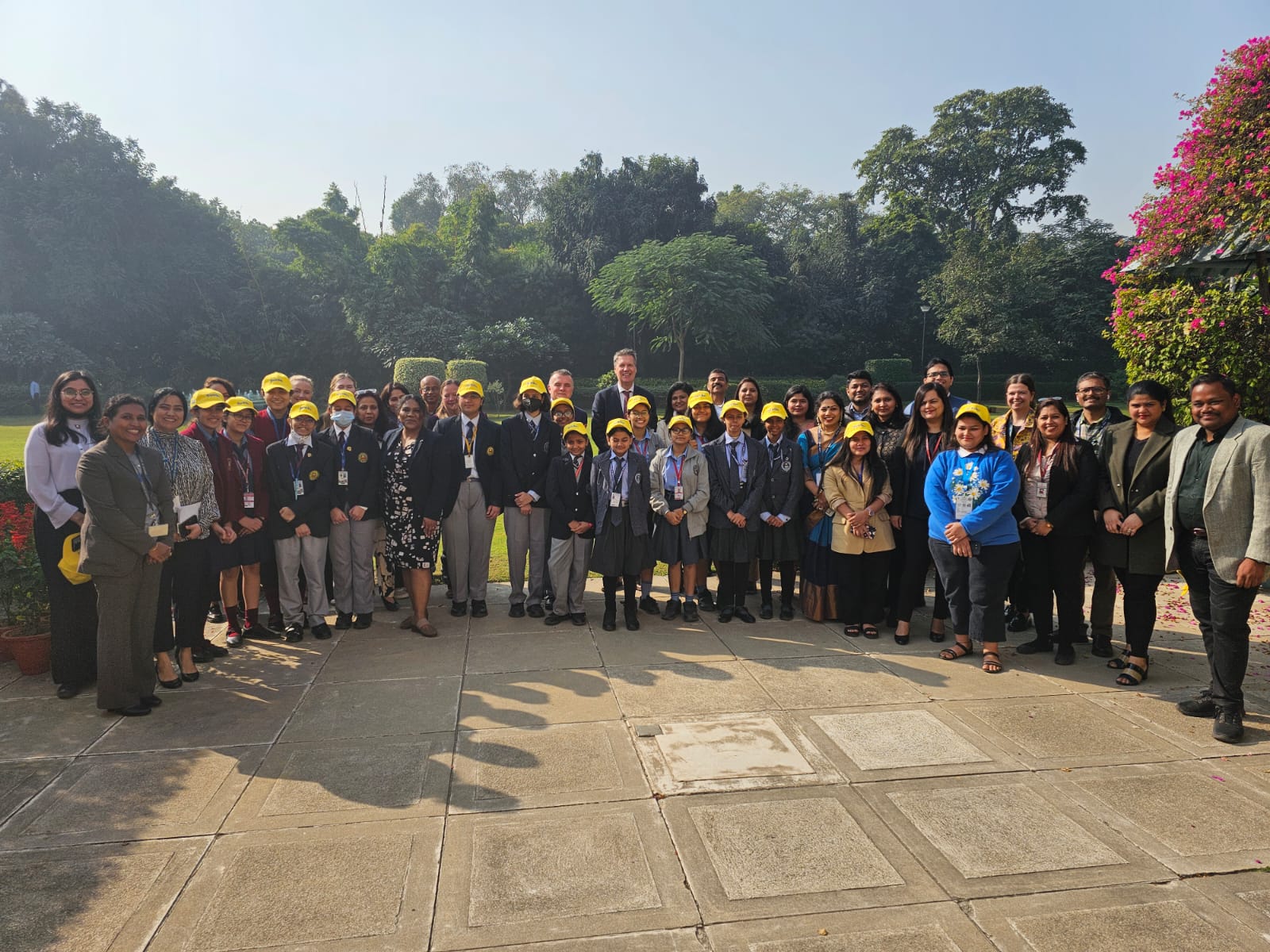
- 04 Dec 2024
In News:
Atal Innovation Mission (AIM), under the NITI Aayog and the Office of Science & Innovation, at the Embassy of Sweden, in partnership with Nordic collaborators - Innovation Norway, Innovation Centre Denmark, and Business Finland, announced the successful conclusion of SheSTEM 2024.
Key Highlights:
- Objective: To inspire youth, especially women, to explore careers in STEM (Science, Technology, Engineering, Mathematics) and promote innovative solutions for sustainability.
- Theme: Focus on Battery Technology and Energy Storage Systems (BEST), part of the India-Nordic BEST project, aimed at fostering sustainability through advanced energy solutions.
Key Features of the Challenge:
- Target Audience: Students from grades 6–12 across India.
- Participation: Over 1,000 submissions showcasing innovative energy storage solutions.
- Format: Students presented prototypes or concepts via a 2-minute video format.
- Focus Areas: Sustainability, energy storage, and innovative solutions to global challenges.
Significance of SheSTEM 2024:
- Youth Empowerment: Provides a platform for young innovators to showcase their ideas and contribute to global sustainability.
- Global Impact: Encourages collaboration between India and Nordic countries in academia, business, and government to explore energy storage and sustainable technologies.
- Women in STEM: Highlights the importance of gender inclusivity in STEM fields, particularly in sustainability and technology.
Key Facts about AIM (Atal Innovation Mission):
- Established: 2016 by NITI Aayog to foster innovation and entrepreneurship across India.
- Core Functions:
- Promote Entrepreneurship: Financial support, mentorship, and nurturing innovative startups.
- Promote Innovation: Creating platforms for idea generation and collaboration.
- Key Programs: Atal Tinkering Labs, Atal Incubation Centres, Atal New India Challenges, and Mentor India.
- Monitoring: Systematic monitoring of initiatives using real-time MIS systems and dashboards.
ICJ Hearing on Landmark Climate Change Case
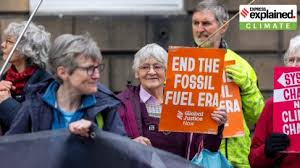
- 04 Dec 2024
In News:
- The International Court of Justice (ICJ) has begun hearings on a landmark climate change case, seeking an advisory opinion on the obligations of countries under international law regarding climate change.
- The case stems from a UN General Assembly (UNGA) resolution initiated by Vanuatu in March 2023, co-sponsored by 132 countries.
Background:
- Vanuatu, a small island nation, faces existential threats from rising sea levels.
- The resolution was passed to clarify climate obligations in light of international laws, including the UNFCCC, Paris Agreement, and other legal instruments like the UN Convention on the Law of the Seas, and the Universal Declaration on Human Rights.
Global Impact of the Case:
- The outcome of the case could influence global climate governance, particularly in the context of climate negotiations.
- It may broaden the legal basis for climate obligations and underscore the legal consequences for non-compliance.
India’s Position:
- India has voiced concerns about the judicial process being the best approach to tackle climate issues, advocating for diplomatic efforts.
- India is scheduled to make its submission on December 5, highlighting its preference for a collaborative, non-top-down approach in climate discussions.
Implications for Developed and Developing Countries:
- The case highlights the historical responsibility of developed countries for climate change due to their higher emissions.
- The ICJ's advisory opinion could reinforce the argument that developed countries' obligations extend beyond the UNFCCC and Paris Agreement, incorporating broader international legal frameworks.
Climate Litigation and Precedent:
- The ICJ ruling could set a precedent for climate litigation, potentially influencing over 2,600 ongoing climate lawsuits globally.
- Notable rulings include the European Court of Human Rights, which held Switzerland accountable for failing to meet emissions targets, and India's Supreme Court recognizing the right to be free from adverse climate impacts in 2023.
Record Participation and Importance of the Case:
- The ICJ has received over 90 written submissions, with 97 countries and 12 international organizations participating in the hearings.
- The case is significant for the growing number of climate-related lawsuits and the evolving nature of international climate law.
Future Prospects:
- The ICJ’s advisory opinion, though non-binding, could significantly impact future climate negotiations, particularly in terms of responsibility sharing and climate finance.
- The outcome could also influence calls for compensation for climate damages, especially from vulnerable states like small island nations.
Places of Worship (Special Provisions) Act, 1991

- 04 Dec 2024
In News:
The Places of Worship (Special Provisions) Act, 1991, is once again in focus, albeit in a context in which its objectives are being ignored. Civil suits questioning the religious character of mosques at Varanasi and Mathura are progressing apace. These developments show that legislation freezing the status of places of worship is inadequate to stop Hindu claimants from making determined legal efforts to achieve their goal of replacing them with temples.
Places of Worship (Special Provisions) Act, 1991:
- Objective: To preserve the religious character of places of worship as they existed on August 15, 1947, and prevent changes in religious identity.
- Key Provisions:
- Section 3: Prohibits conversion of a place of worship from one religion to another.
- Section 4(1): Ensures the religious character remains unchanged from August 15, 1947.
- Section 4(2): Terminates ongoing or future legal proceedings seeking to alter the religious character of a place of worship.
- Exemptions:
- Ayodhya dispute: Exempted, allowing ongoing litigation.
- Ancient monuments & archaeological sites: Not covered by the Act.
- Already settled disputes or those agreed upon before the Act came into force.
- Penalties: Violators can face up to 3 years of imprisonment or fines.
- Criticism: The Act has been challenged for limiting judicial review, imposing a retrospective cutoff date, and restricting religious rights.
Recent Legal Disputes:
- Gyanvapi Mosque (Varanasi):
- Claim: Hindu worshippers assert the right to worship deities (e.g., Ma Sringar Gauri, Lord Vishweshwar) within the mosque premises.
- Legal Basis: Claim that the mosque was built over an ancient Hindu temple.
- Court's Ruling: The court allows the case to proceed, stating that the aim is to assert worship rights, not change the mosque’s status.
- Archaeological Survey: ASI report confirms the existence of a temple before the mosque’s construction.
- Key Legal Outcome: The Places of Worship Act does not bar these suits as they aim to ascertain the religious character of the site, not alter it.
- Shahi Idgah Mosque (Mathura):
- Claim: Hindu groups assert the mosque was built over Lord Krishna’s birthplace.
- Historical Context: The dispute was settled by a compromise in 1968, which was implemented in 1974, where part of the land was given to the mosque.
- Current Legal Dispute: New suits challenge the 1968 agreement as ‘fraudulent’ and seek the entire land to be transferred to the deity.
- Court's Ruling: The Act is not applicable as the 1968 agreement predates the 1991 Act, and the dispute pertains to the compromise, not the religious character.
- Shahi Jama Masjid (Sambhal, Uttar Pradesh):
- Claim: Allegation that the mosque was built over a Hindu temple (Hari Har Mandir).
- Survey Request: Petitioners seek a survey to verify the site’s historical and religious character.
- Legal Context: The mosque is a protected monument under the Ancient Monuments Preservation Act, 1904.
Key Legal Interpretations:
- Court’s Role: Courts have ruled that the Places of Worship Act does not prohibit suits related to the religious character of a site if they are aimed at determining, not altering, that character.
- Interpretation of ‘Religious Character’: The Allahabad High Court stated that a structure can’t have dual religious character (both Hindu and Muslim), and the religious character of a place must be determined through evidence.
Political and Social Implications:
- Ongoing Controversy: The Gyanvapi and Mathura mosque disputes continue to fuel political and religious debates, as Hindu organizations seek to assert their claims, while mosque committees and Muslim groups resist changes.
- Public and Legal Attention: The legal and political landscape surrounding the Places of Worship Act remains contentious, with several legal suits challenging its applicability.
1984 Bhopal disaster
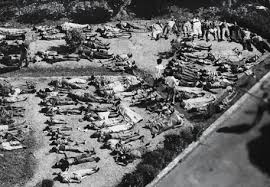
- 04 Dec 2024
In News:
Forty years after the Bhopal disaster on December 2-3, 1984, several hundred tonnes of toxic waste still remain around the ill-fated Union Carbide plant.
Overview of the incident:
The 1984 Bhopal disaster, one of the world’s worst industrial accidents, was caused by the release of methyl isocyanate (MIC) gas, which was a key component in the production of pesticides at the Union Carbide India Limited (UCIL) plant. However, the toxic legacy of the disaster extends far beyond MIC, with a range of other harmful substances lingering in the environment. These include:
- Methyl Isocyanate (MIC):Primary toxic agent: MIC is a highly toxic, volatile compound. Exposure can cause severe respiratory distress, eye irritation, pulmonary edema, and even death.
- Heavy Metals:The site of the plant is contaminated with various heavy metals, including:
- Mercury: Known to accumulate in the body and affect the nervous system, kidneys, and liver. Even small doses over time can lead to chronic health problems.
- Chromium: Exposure to high levels of chromium, particularly hexavalent chromium, is associated with lung cancer and damage to the respiratory system.
- Lead: A potent neurotoxin, lead can cause developmental delays, memory problems, and damage to the kidneys.
- Nickel: Can cause respiratory and lung cancers when inhaled in significant quantities.
- Copper: High levels of copper exposure can damage the liver and kidneys.
- Organic Compounds:Several organic chemicals were found at the site, including:
- Hexachlorobutadiene: A suspected carcinogen that can cause liver damage, kidney damage, and neurological issues upon exposure.
- Chloroform (Trichloromethane): Known for its effects on the central nervous system, exposure can lead to dizziness, loss of consciousness, and even death at high concentrations. It is also a possible carcinogen.
- Carbon Tetrachloride: A potent liver toxin, exposure can result in liver damage, cancer, and nervous system toxicity.
- Trichlorobenzene: These compounds are volatile and can spread through air and water, accumulating in fatty tissues and causing damage to organs like the liver and kidneys.
- Persistent Organic Pollutants (POPs):Some of the contaminants, particularly the organic compounds, are classified as persistent organic pollutants, which do not degrade easily in the environment. These can lead to:
- Cancer: Several of these compounds are carcinogenic.
- Neurological damage: Prolonged exposure can affect both the central and peripheral nervous systems.
- Reproductive and developmental disorders: Exposure has been linked to adverse effects on fertility and developmental health in humans.
- Environmental and Long-term Health Effects:
- Even decades later, contamination continues to affect the health of people living around the site, with high rates of cancers, birth defects, respiratory diseases, and other health issues. Water sources in the region remain unsafe due to heavy contamination with toxic chemicals. Persistent organic pollutants have been identified in local communities, indicating that the contamination continues to spread.
Retired Sportsperson Empowerment Training (RESET) Programme
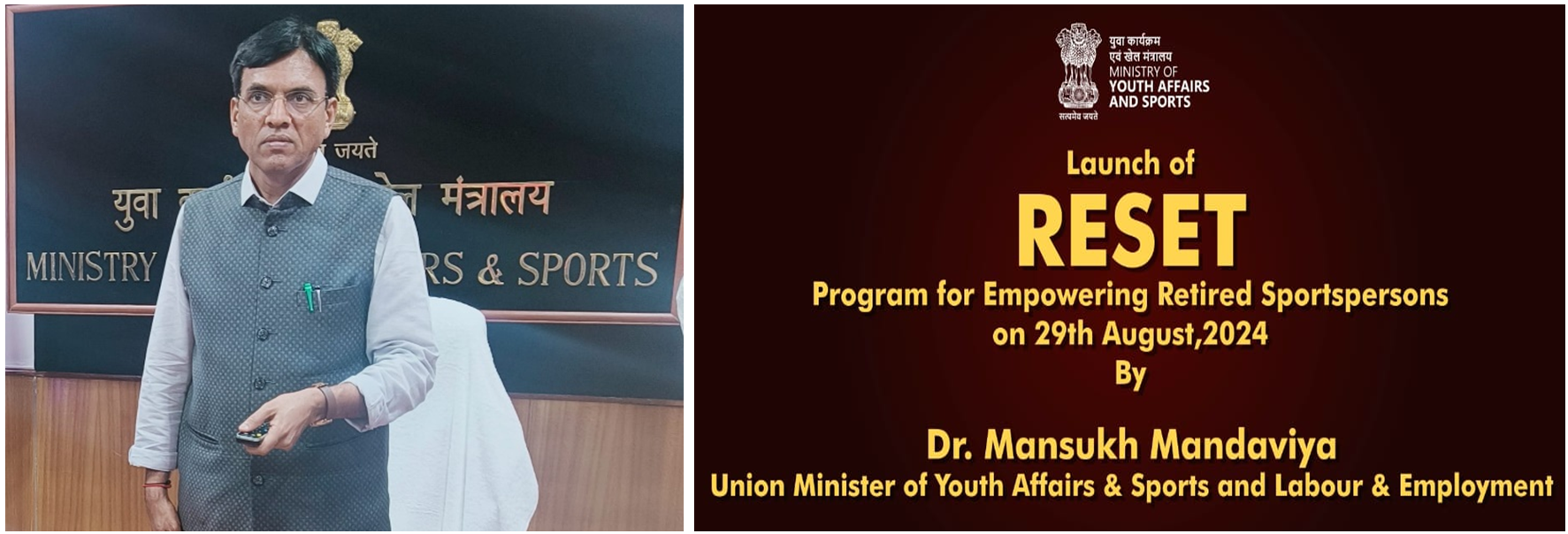
- 04 Dec 2024
In News:
At an event celebrating the National Sports Day, The Minister for Youth Affairs & Sports and Labour& Employment launched “Retired Sportsperson Empowerment Training” (RESET) Programme.
Key Highlights:
- Objective:
- Empower retired athletes through career development.
- Provide tailored education, internships, and skill enhancement.
- Address the human resource gap in the sports sector.
- Eligibility Criteria:
- Retired athletes aged 20-50 years.
- Winners of international medals or participants in international events.
- National/state-level medalists or participants in recognized competitions (e.g., National Sports Federations, Indian Olympic Association).
- Courses Offered (16 Courses):
-
- Strength & Conditioning Trainer
- Sports Nutritionist
- Sports Event Management
- Corporate Wellness Trainer
- Sports Masseur
- Sports Entrepreneurship
- Store Manager
- Fitness Centre Manager
- Physical Education Trainer
- Fitness Trainer
- Yoga Trainer
- Venue Supervisor
- Self-Defence Trainer
- Community Sports Trainer
- Camping & Trekking Guide
- Facility Caretaker
- Program Structure:
- Two levels based on educational qualifications:
- Class 12 and above
- Class 11 and below
- Hybrid learning mode:
- Self-paced learning via a dedicated portal.
- On-ground training and internships.
- Two levels based on educational qualifications:
- Internship and Placement:
- Internships offered in sports organizations, competitions, training camps, and leagues.
- Post-course placement assistance and entrepreneurial guidance.
- Implementing Agency:Lakshmibai National Institute of Physical Education (LNIPE) for the pilot phase.
- Importance:
- Provides sustainable career pathways for retired athletes.
- Utilizes the experience and skills of retired athletes to benefit future generations of athletes.
- Contributes to the growth of sports and nation-building.
- National Sports Day (29th August):
- Celebrated in honor of Major Dhyan Chand's birth anniversary.
- Promotes sports and physical fitness in India.
- Awards like Major Dhyan Chand Khel Ratna presented to honor excellence in sports.
26 Rafale-Marine Jets
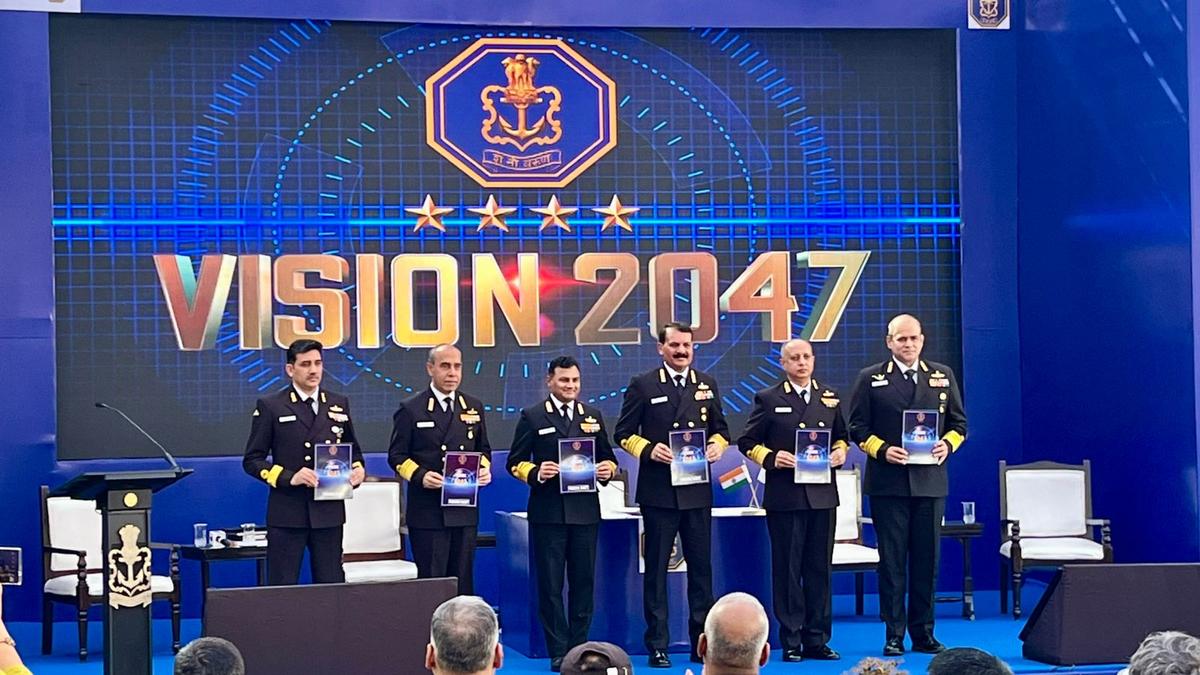
- 03 Dec 2024
In News:
- Deal for 26 Rafale-M jets nearing completion, with final formalities expected to be completed by January 2025.
- These jets are designed for naval operations and will be deployed on INS Vikrant and INS Vikramaditya.
- Rafale-M Features: Multi-role, advanced avionics, AESA radar, and armaments like Meteor, MICA, SCALP, EXOCET.
- Three Scorpene Submarines: Additional three Scorpene-class submarines to be procured from France.
- These are part of a repeat order to Mazagon Dock Shipbuilders Limited (MDL), with five of the earlier six already inducted into service.
Nuclear Capabilities:
- INS Arighaat: Successfully fired a Submarine-Launched Ballistic Missile (SLBM), marking a significant milestone for India's nuclear deterrence.
- Indigenous Nuclear Attack Submarine (SSN): India’s first indigenous SSN expected by 2036-37.
Strategic Maritime Engagement:
- Indian Ocean Region (IOR): Active monitoring of maritime activities, especially of China's PLA Navy and Chinese research vessels.
- Pakistan Navy Expansion: Acknowledged Pakistan’s efforts to become a 50-ship Navy, including the acquisition of 8 Chinese submarines. Indian Navy is adapting its plans to address this.
Nuclear Submarine Program (SSBN):
- INS Arihant: Conducted multiple deterrence patrols.
- INS Arighaat: Ongoing trials including the recent K4 SLBM test, with a range of 3,500 km.
Naval Vision 2047:
- Navy Chief released Vision 2047 document, outlining the future direction and growth of the Indian Navy.
Bilateral and Multilateral Engagements:
- Participation in various bilateral and multilateral exercises, including RIMPAC 2024 (Hawaii) and Russian Federation Navy’s Raising Day (St. Petersburg).
Notre-Dame Cathedral
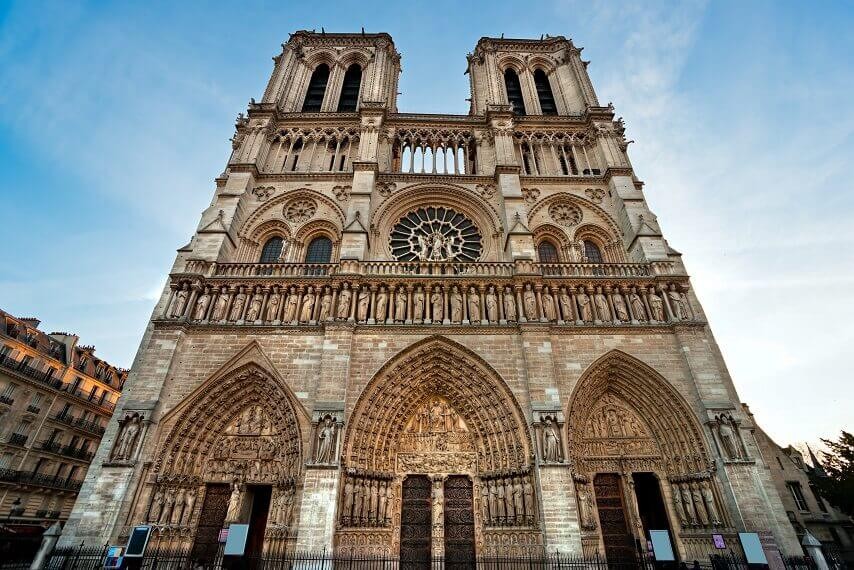
- 03 Dec 2024
In News:
The Notre-Dame Cathedral in Paris, a landmark symbol of French Gothic architecture, is set to reopen on after undergoing extensive renovations following a devastating fire in April 2019.
Historical and Architectural Significance:
- Location: Situated on Île de la Cité in the Seine River, Paris.
- Construction: Began in 1163 under Bishop Maurice de Sully and completed in 1260, showcasing a blend of early Gothic to Rayonnant Gothic styles.
- Key Features: The cathedral is renowned for its rib vaults, flying buttresses, stained-glass windows, and sculpted gargoyles.
- Cultural Importance: It has been a stage for significant historical events, including Napoleon Bonaparte's coronation in 1804. It also houses the Holy Crown of Thorns and relics from the crucifixion of Jesus.
- Literary Legacy: Featured in Victor Hugo's "The Hunchback of Notre-Dame" (1831), which drew attention to its architectural and historical significance.
Modern History and Renovation:
- The cathedral endured historical events such as the French Revolution, World War II, and attacks during the Protestant Reformation.
- In April 2019, a fire severely damaged the roof and spire, sparking an international outpouring of support for its restoration.
- Renovation efforts began soon after, involving more than 1,000 craftspeople, with President Emmanuel Macron calling it “the project of the century.”
Construction and Modifications Over Centuries:
- The Notre-Dame was a model for early Gothic architecture and has undergone multiple renovations, including the addition of flying buttresses and other structural changes during the 13th and 14th centuries.
- Modifications continued through the Renaissance and Classical periods, reflecting changing artistic styles and the political moods of the time.
Significance in French History:
- Witness to History: The cathedral has been central to 800 years of French history, serving as a backdrop for both brilliant and tumultuous events.
- Religious and Political Symbolism: It was the heart of Paris' religious and political life, acting as a symbol of the intertwined relationship between the church and the monarchy.
Madhya Pradesh’s 8th Tiger Reserve: Ratapani
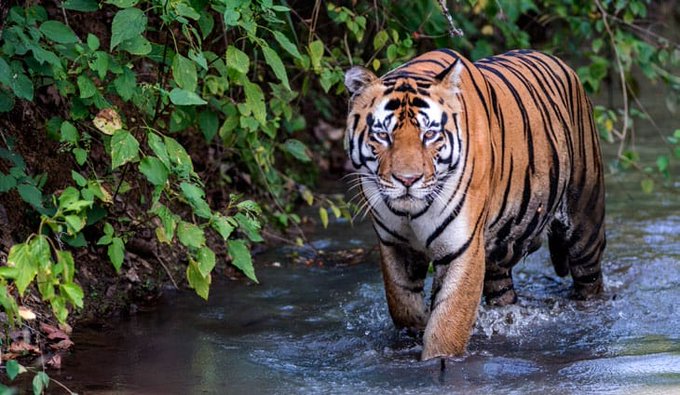
- 03 Dec 2024
In News:
Recently, the Ratapani Wildlife Sanctuary in Madhya Pradesh was officially declared a Tiger Reserve, making it the 8th such reserve in the state. This declaration follows approval from the Ministry of Environment, Forest and Climate Change through the National Tiger Conservation Authority (NTCA).
Key Details:
- Core Area: 763.8 sq. km
- Buffer Area: 507.6 sq. km
- Total Area: 1,271.4 sq. km
- Ratapani Tiger Reserve is located in the Raisen and Sehore districts, within the Vindhya hills, and is home to approximately 90 tigers.
- It also forms a crucial part of Madhya Pradesh’s tiger habitat and serves as a migration corridor from the Satpura ranges.
Economic and Ecotourism Benefits:
- The designation will boost ecotourism, generating employment and improving livelihoods for local communities.
- Eco-development programs will support residents, providing new opportunities and addressing the balance between conservation and human interests.
Wildlife Conservation and Management:
- The reserve will focus on habitat management, wildlife protection, and community engagement.
- The core area has been recognized as a critical tiger habitat under the Wildlife Protection Act, 1972.
- Efforts will include strengthening anti-poaching measures, improving surveillance, and enhancing prey base restoration.
Significance for Madhya Pradesh:
- This move places Madhya Pradesh as the "Tiger State of India", with significant conservation focus on the Ratapani and Madhav National Park (also in the process of becoming a tiger reserve).
- Madhya Pradesh now hosts 8 tiger reserves, contributing significantly to the country's overall tiger conservation efforts.
MahaKumbh Mela 2025
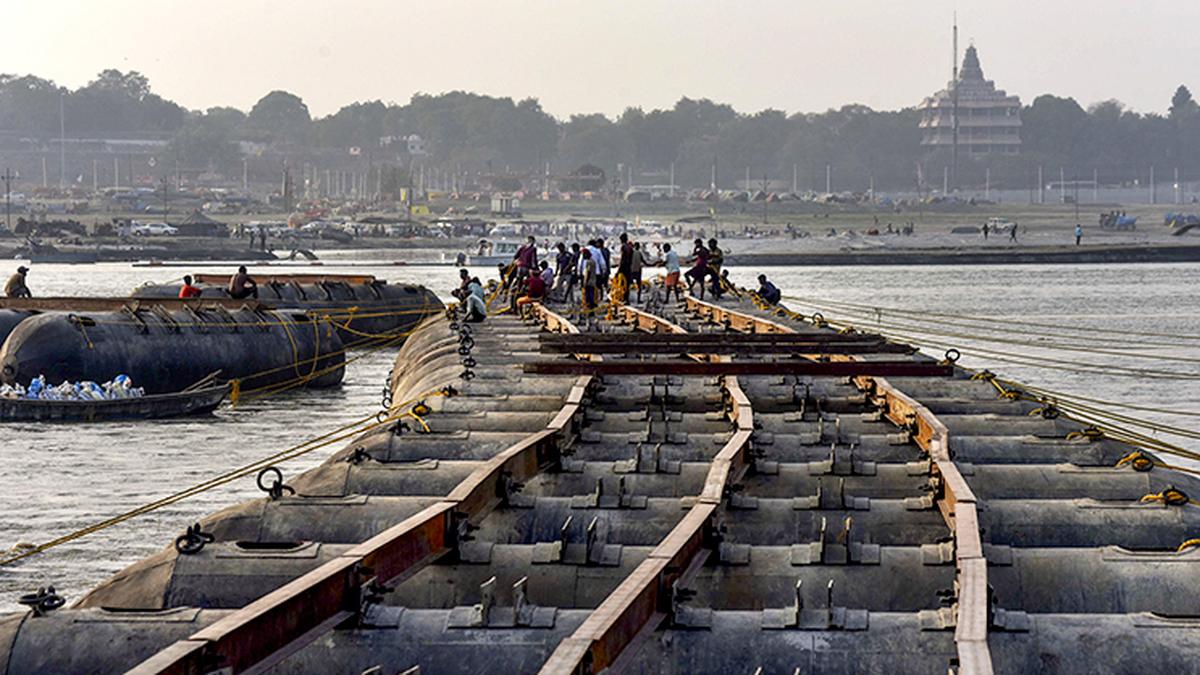
- 03 Dec 2024
In News:
- On December 1, 2024, the Uttar Pradesh government declared the MahaKumbh Mela area as a temporary district for four months.
- The new district will be known as the MahaKumbh Mela District, to streamline management for the 2025 MahaKumbh.
- Over 5,000 hectares of land will be part of this district, including 66 revenue villages from four tehsils: Sadar, Sorav, Phulpur, and Karchana.
Key Administrative Changes:
- Mela Adhikari (Kumbh Mela Officer) will act as the District Magistrate (DM) and will hold powers of Executive Magistrate, District Magistrate, and Additional District Magistrate.
- The Mela Adhikari will have authority under the Indian Civil Defense Code, 2023, and the Uttar Pradesh Revenue Code, 2006.
- The Mela Adhikari can appoint an Additional Collector for the district.
MahaKumbh Mela Overview:
- The Kumbh Mela is recognized by UNESCO as an Intangible Cultural Heritage of Humanity.
- It is the largest peaceful congregation of pilgrims, with participants bathing in sacred rivers at locations including Prayagraj, Haridwar, Ujjain, and Nashik.
- The PrayagrajKumbh takes place at the Sangam, the confluence of the Ganges, Yamuna, and the mythical Saraswati rivers.
- The event spans over a month and includes religious, cultural, and social activities, along with massive infrastructural setup including tented townships, civic facilities, and security measures.
International Day of Persons with Disabilities 2024
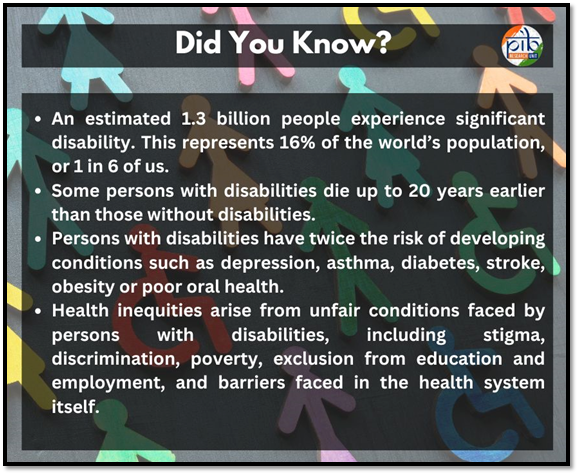
- 03 Dec 2024
In News:
- The International Day of Persons with Disabilities (IDPD), observed annually on December 3, celebrates the resilience, contributions, and leadership of persons with disabilities (PwDs) worldwide.
- Theme: “Amplifying the leadership of persons with disabilities for an inclusive and sustainable future”
History
- Proclamation: Established by the United Nations General Assembly in 1992 to promote the rights and well-being of persons with disabilities (PwDs).
- Convention on the Rights of Persons with Disabilities (CRPD): Adopted in 2006, further advanced the rights and well-being of PwDs and supports the 2030 Agenda for Sustainable Development.
Initiatives
Department of Empowerment of Persons with Disabilities
- In order to give focused attention to policy issues and meaningful thrust to the activities aimed at the welfare and empowerment of Persons with Disabilities (PwDs), a separate Department of Disability Affairs was carved out of the Ministry of Social Justice and Empowerment on May 12, 2012.
- The Department was renamed the Department of Empowerment of Persons with Disabilities on December 8, 2014.
- The Department acts as a nodal agency for matters pertaining to disability and persons with disabilities, including effecting closer coordination among different stakeholders: related Central Ministries, State/UT Governments, NGOs, etc., in matters pertaining to disability.
Accessible India Campaign
- The Accessible India Campaign (Sugamya Bharat Abhiyan), launched on December 3, 2015 aims to achieve universal accessibility for Persons with Disabilities (PwDs) across India.
- The key focus areas include improving Built Environment Accessibility in public spaces, enhancing Transportation Accessibility for independent mobility, creating an accessible Information and Communication ecosystem, and expanding Sign Language Access through interpreter training and better media support.
Deendayal Divyangjan Rehabilitation Scheme (DDRS)
- DDRS is a central sector scheme to provide grant-in-aid to non-governmental organizations (NGOs) for projects relating to the rehabilitation of persons with disabilities aimed at enabling persons with disabilities to reach and maintain their optimal, physical, sensory, intellectual, psychiatric, or socio-functional levels.
District Disability Rehabilitation Centre (DDRC)
- The District Disability Rehabilitation Centre (DDRC) aims to address the needs of persons with disabilities through a multifaceted approach.
- Its objectives include early identification and intervention, raising awareness, and assessing the need for assistive devices along with their provision and fitment, arrangement of loans for self-employment and more. Additionally, it acts as an outreach center for services provided by National Institutes and works to promote a barrier-free environment for individuals with disabilities.
Assistance to Persons with Disabilities for Purchase/Fitting of Aids/ Appliances (ADIP) Scheme.
- The main objective of the Scheme is to provide grants-in-aid to the various implementing agencies (National Institutes/Composite Regional Centers/Artificial Limbs Manufacturing Corporation of India.
Schemes For Implementation Of Rights of Persons With Disabilities Act 2016 (SIPDA)
- The Scheme for Implementation of the Rights of Persons with Disabilities Act, 2016 (SIPDA) is a comprehensive "Central Sector Scheme" that encompasses 10 sub-schemes following its revision during the Expenditure Finance Committee (EFC) meeting on 11th August 2021.
- This revised scheme, approved by the Hon'ble Finance Minister, is designed to operate from 2021–22 to 2025–26.
Divya Kala Mela
- The Divya Kala Mela is a national-level fair dedicated to Divyangjan and represents a significant milestone in India’s journey toward inclusivity and empowerment of the Divyangjan, or differently-abled individuals.
PM-DAKSH
- PM-DAKSH (Pradhan Mantri DakshtaAurKushaltaSampannHitgrahi) Yojana is a one-stop destination for Persons with Disabilities (PwDs), skill training organizations, and employers across India to be a part of the National Action Plan for Skill Development of Persons with Disabilities implemented by the Department of Empowerment of Persons with Disabilities (DEPwD). Under this portal, there are two modules:
- Divyangjan Kaushal Vikas: Skill training is conducted for PwDs through the portal across the country.
- Divyangjan Rozgar Setu: The platform aims to act as a bridge between PwDs and employers having jobs for PwDs. The platform provides geo-tagged based information on employment/earning opportunities within private companies as well as PwDs across India.
Network Readiness Index 2024

- 02 Dec 2024
In News:
- India has climbed 11 positions to secure 49th rank in the Network Readiness Index (NRI) 2024, compared to 60th in NRI 2023.
- This improvement reflects India’s significant progress in the digital and telecommunication sectors.
NRI 2024 Overview:
- The NRI 2024 report assesses the network readiness of 133 economies based on four pillars: Technology, People, Governance, and Impact, using 54 variables.
- Published by the Portulans Institute, Washington DC.
India's Leading Indicators:
- Top rankings:
- 1st Rank: ‘AI scientific publications’, ‘AI talent concentration’, and ‘ICT services exports’.
- 2nd Rank: ‘FTTH/Building Internet subscriptions’, ‘Mobile broadband internet traffic’, and ‘International Internet bandwidth’.
- 3rd Rank: ‘Domestic market scale’.
- 4th Rank: ‘Annual investment in telecommunication services’.
Digital Progress:
- India has demonstrated remarkable digital transformation, especially in technological innovation and digital infrastructure.
Economic Grouping:
- India ranks 2nd in the lower-middle-income countries group, following Vietnam.
Telecommunication Achievements:
- Tele-density has increased from 75.2% to 84.69% in the past decade, with 119 crore wireless connections.
- Internet subscribers have surged from 25.1 crore to 94.4 crore, aided by Digital India initiatives and rural broadband expansion.
- 5G Launch: In 2022, India launched 5G services, significantly boosting global mobile broadband speed rankings from 118th to 15th.
Future Vision:
- India’s Bharat 6G Vision aims to position the country as a leader in future telecom technologies, backed by strong infrastructure and investments in emerging technologies.
Telecom Reforms:
- Spectrum management, ease of doing business, and consumer protection reforms have strengthened India’s telecom sector, contributing to its improved network readiness ranking.
World AIDS Day 2024
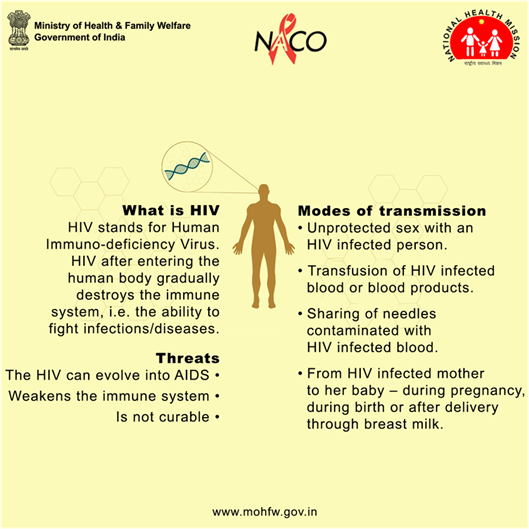
- 02 Dec 2024
In News:
World AIDS Day is observed annually on December 1 since 1988 to raise awareness about HIV/AIDS and demonstrate solidarity with affected individuals. It commemorates lives lost to AIDS and highlights progress and ongoing challenges in prevention, treatment, and care.
Key Highlights:
- 2024 Theme: "Take the Rights Path: My Health, My Right!"
- Focuses on healthcare access, human rights, and addressing systemic inequalities in HIV prevention and treatment services.
- Aims to empower individuals to manage their health and reduce stigma.
- Advocates for inclusivity and global cooperation to eradicate AIDS.
Global and National Perspective on HIV/AIDS
- Global Progress:
- According to UNAIDS Global AIDS Update 2023, significant strides have been made globally in reducing new HIV infections and improving treatment access.
- India has been acknowledged for its robust legal framework and financial investments in HIV control.
- India's HIV Statistics:
- Over 2.5 million people live with HIV in India.
- Annual new infections: 66,400, a 44% reduction since 2010.
- HIV prevalence among adults is 0.2%.
- Free lifelong treatment is provided to over 16 lakh people at 725 ART centers (as of 2023).
India’s Comprehensive HIV/AIDS Response
- Early Initiatives:
- India’s response to HIV/AIDS began in 1985 with sero-surveillance and blood safety measures.
- The National AIDS and STD Control Programme (NACP) was launched in 1992, evolving into one of the world’s largest HIV/AIDS control programs.
- Evolution of NACP:
- Phase I (1992-1999): Focused on awareness and blood safety.
- Phase II (1999-2007): Introduced direct interventions in prevention, detection, and treatment.
- Phase III (2007-2012): Expanded decentralized management at the district level.
- Phase IV (2012-2017): Increased funding and sustainability of interventions.
- Phase IV Extended (2017-2021): Passage of the HIV and AIDS (Prevention and Control) Act, 2017; introduction of the ‘Test and Treat’ policy; and response to the COVID-19 pandemic with IT innovations.
- NACP Phase V (2021-2026):
- Central Sector Scheme with an outlay of Rs. 15,471.94 crore.
- Goals: Reduce new HIV infections and AIDS-related deaths by 80% by 2025-26 from 2010 levels.
- Eliminate vertical transmission of HIV and syphilis, reduce stigma, and ensure universal access to STI/RTI services for vulnerable populations.
- Key strategies include community-centered approaches, technology integration, gender-sensitive responses, and public-private sector partnerships.
Key Objectives of NACP Phase V
- Prevention & Control:
- Ensure 95% of high-risk individuals access prevention services.
- Achieve the 95-95-95 targets: 95% of HIV-positive individuals know their status, are on treatment, and achieve viral suppression.
- Eliminate vertical transmission of HIV and syphilis.
- Reduce stigma and discrimination to less than 10%.
- STI/RTI Prevention:
- Universal access to high-quality services for at-risk populations.
Asia-Oceania Meteorological Satellite Users' Conference (AOMSUC-14)

- 02 Dec 2024
In News:
The 14th Asia-Oceania Meteorological Satellite Users' Conference (AOMSUC-14)was held in New Delhi, India, hosted by the India Meteorological Department (IMD) under the Ministry of Earth Sciences. This annual event brings together meteorologists, earth scientists, and satellite data users to discuss advancements in satellite technology for weather and climate monitoring.
Key Facts:
- Objective:
- Promote Satellite Observations: Highlight the importance of satellite data for meteorology and climatology.
- Advance Remote Sensing Science: Foster advancements in satellite technology and its application in weather forecasting and climate monitoring.
- Encourage Collaboration: Facilitate dialogue between satellite operators and users to enhance the use of satellite data across the Asia-Oceania region.
- Discuss Future Plans: Update on the current status and future plans of international space programs.
- Engage Young Scientists: Encourage the involvement of young researchers in satellite science and meteorology.
- Participants:
- Around 150 participants from various countries, including key international space organizations like WMO, NASA, ESA, JAXA, and other meteorological and space entities.
- The conference will feature oral presentations, poster sessions, panel discussions, and a training workshop focused on satellite data application.
- Significance of the Conference:
- Regional Cooperation: AOMSUC promotes stronger cooperation between countries in the Asia-Oceania region, addressing shared challenges in meteorology and satellite data usage.
- Improved Forecasting: Enhances satellite data utilization for more accurate weather forecasting, disaster prediction, and climate monitoring.
- Disaster Risk Management: Strengthens early warning systems for extreme weather events, improving disaster preparedness and response.
- Capacity Building: Offers training and workshops for local meteorologists, boosting the capacity of countries to use satellite data effectively for weather forecasting and climate services.
- Data Sharing: Encourages collaboration in satellite data sharing, facilitating better access to meteorological data across national borders.
- History of AOMSUC:The first AOMSUC was held in Beijing, China in 2010. Since then, the conference has been held annually in various Asia-Oceania locations and has become a leading event for the meteorological community.
KisanPehchaan Patra
- 02 Dec 2024
In News:
The Indian government is actively promoting the creation of digital identities for farmers through the KisanPehchaan Patra (Farmer ID). The initiative is an essential part of the Digital Agriculture Mission under the AgriStack initiative.
Key Details:
Objective:
- The main goal is to provide digital IDs linked to Aadhaar for farmers, capturing comprehensive agricultural data including land records, crop information, and ownership details.
- These digital identities are designed to enhance farmers' access to government schemes and digital agriculture services.
Farmer ID Creation Timeline:
- The government plans to create digital IDs for 11 crore farmers in phases:
- 6 crore farmers in FY 2024-25.
- 3 crore farmers in FY 2025-26.
- 2 crore farmers in FY 2026-27.
AgriStack Initiative:
- The AgriStack initiative aims to build a Digital Public Infrastructure (DPI) for the agriculture sector, which includes:
- Farmers' Registry.
- Geo-referenced village maps.
- Crop Sown Registry.
Implementation Strategy:
- Camp-mode approach: States have been instructed to organize field-level camps to ensure faster and inclusive registration of farmers.
- Financial Incentives:
- States will receive ?15,000 per camp for organizing these camps.
- Additionally, ?10 per Farmer ID issued.
- Funding is provided through the Pradhan Mantri KisanSamman Nidhi (PM-Kisan) scheme.
Benefits of Digital Farmer ID:
- Targeted Delivery of Benefits: Ensures subsidies and benefits reach legitimate farmers and eliminates duplication.
- Precision Agriculture: Supports data-driven policies for better crop planning, insurance, and market linkages.
- Financial Inclusion: Facilitates easy access to credit, loans, and crop insurance, empowering farmers financially.
- Better Monitoring: Helps in tracking the actual implementation of schemes and ensures that only eligible farmers benefit.
Progress in States:
- Advanced States: Gujarat, Madhya Pradesh, Maharashtra, and Uttar Pradesh have made significant progress in issuing digital Farmer IDs.
- Testing Phase: States like Assam, Chhattisgarh, and Odisha are still in the field-testing phase.
- Special Assistance Scheme: The Finance Ministry allocated ?5,000 crore in August 2024 to assist states in creating the Farmers' Registry, with funds available until March 2025.
Linkage with Land Records and Crop Data:
- The Farmer ID integrates with state land records and crop data, creating a dynamic and accurate database known as the Farmer’s Registry.
- This data helps in the development of better agricultural policies and decision-making.
Digital Agriculture Mission:
- The government approved a substantial outlay of ?2,817 crore for the Digital Agriculture Mission, which is intended to modernize agricultural practices and build robust digital infrastructure.
- The mission also includes the launch of the Digital Crop Estimation Survey (DGCES), which will help in crop estimation and better resource allocation.
National Policy on Female Labour Force Participation (FLFP)

- 02 Dec 2024
In News:
- India is working on a national policy to enhance female labour force participation (FLFP), focusing on creating a supportive care economy structure.
- The policy is being developed by an inter-ministerial team involving the Ministries of Skill Development, Labour, Rural Development, and Women and Child Development.
- Goal: To reduce barriers for women, especially related to caregiving responsibilities, and increase their participation in the workforce.
Key Focus Areas:
- Care Economy: Involves both paid and unpaid caregiving services, such as childcare, eldercare, domestic work, and health services.
- The policy aims to formalize care work, addressing its undervaluation and encouraging women's workforce participation.
- Proposes a core skilling package for caregivers, particularly for childcare in rural and informal sectors.
- Childcare Facilities: Targeting women working under schemes like MGNREGS (Mahatma Gandhi National Rural Employment Guarantee Scheme).
Current Challenges:
- Post-marriage employment drop: Women face a significant decline in workforce participation after marriage, often due to caregiving roles.
- In India, 53% of women are outside the labour force, mostly due to unpaid domestic work, unlike only 1.1% of men.
- The gender divide in caregiving is stark: Women spend over 5 hours daily on unpaid domestic work (81% of females), compared to 12.4% of males.
Key Initiatives:
- Palna Scheme: Provides daycare through Anganwadi-cum-Crèche facilities for working parents, benefiting children aged 6 months to 6 years. 1,000 crèches are operational.
- Women’s Employment Data:
- In rural India, 36.6% of women participate in the workforce, compared to 23.8% in urban areas.
- Post-marriage, female employment drops by 12 percentage points, even without children.
- Improving Female Labour Force Participation (FLFP): Key to India's growth, as matching women’s workforce participation with men could boost GDP by 27% (IMF).
Barriers to Women’s Workforce Inclusion:
- Unpaid Care Work: Women's disproportionate share of household duties limits paid employment opportunities.
- Cultural Norms: Gender expectations restrict women’s access to employment, especially in rural areas.
- Educational Barriers: Limited access to education for girls restricts skill development, lowering job prospects.
- Health & Safety Issues: Health challenges and safety concerns at workplaces hinder women's workforce participation.
- Lack of Supportive Policies: Absence of parental leave and flexible work arrangements for women, especially in the informal sector.
Government Initiatives for Women’s Employment:
- BetiBachaoBetiPadhao: Promotes girl child education and empowerment.
- National Education Policy (NEP): Ensures gender equity in education.
- Maternity Benefit (Amendment) Act, 2017: Extends paid maternity leave to 26 weeks and mandates crèche facilities in large establishments.
- Labour Codes (2019-2020): Codifies labor laws to provide a framework for improving women’s workplace safety and employment opportunities.
Global Examples & Inspiration:
- Japan’s Womenomics: Aimed at increasing female participation, Japan's womenomics reforms have grown women’s labour force participation from 64.9% to 75.2% (2013-2023).
- Flexible Work Models: Countries like Netherlands encourage part-time and remote work, offering flexibility to manage work-life balance.
- Sweden’s Investment in ECCE: Investing 1% of GDP in Early Childhood Care and Education (ECCE) has significantly reduced women’s workforce exclusion.
Way Forward:
- National Women’s Urban Employment Guarantee Act (WUEGA): Promotes gender-balanced work environments and childcare facilities at work sites.
- Flexible Work Options: Encouraging remote work, parental leave, and childcare support will empower more women to balance caregiving and employment.
- Investment in the Care Economy: To reduce the care burden on women, substantial investment in ECCE and related sectors is essential to increase women’s participation and economic independence.
Shahi Jama Masjid in Sambhal
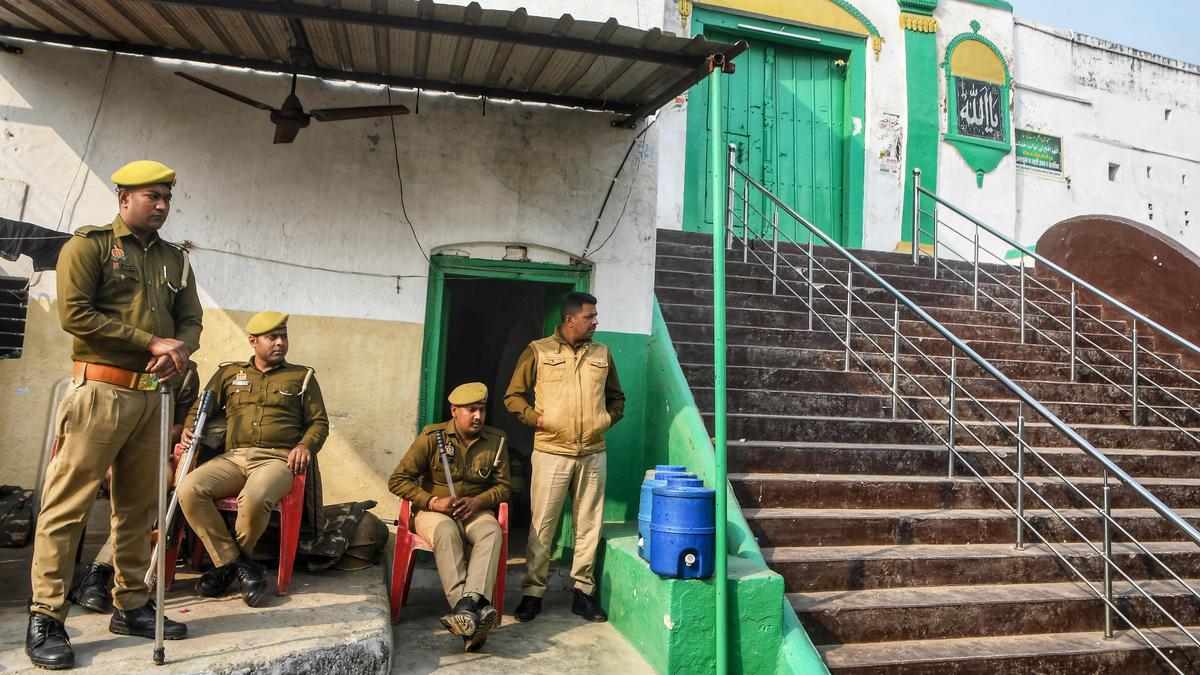
- 01 Dec 2024
In News:
The controversy surrounding the Shahi Jama Masjid in Sambhal, Uttar Pradesh, has intensified following claims that the mosque, built during the Mughal Emperor Babur's reign (1526–1530), was constructed over a Hindu temple, the Hari Har Mandir. This claim has led to legal battles and violent clashes, making it part of a broader series of disputes involving mosques built during the Mughal era, such as the Gyanvapi mosque in Varanasi and the Eidgah Masjid in Mathura.
Background and Legal Context:
The dispute began when a petition was filed in Sambhal's district court on November 19, 2024, claiming the Jama Masjid was built on the site of an ancient temple. The petitioners, led by Hari Shanker Jain, demanded a survey to ascertain the religious character of the site. This petition follows a pattern seen in similar cases in Varanasi, Mathura, and Dhar, where Hindu groups have raised similar claims about mosque sites. The court ordered a photographic and videographic survey of the mosque, which, initially carried out peacefully, later sparked violence on November 24 when the survey was accompanied by chanting crowds. This led to protests, stone pelting, and allegations of police firing, resulting in several deaths.
The Jama Masjid is a protected monument under the Ancient Monuments Preservation Act, 1904, and is listed as a Monument of National Importance by the Archaeological Survey of India (ASI). This gives the case legal and cultural sensitivity, as it involves both national heritage and religious sentiments.
Historical and Architectural Context:
The Shahi Jama Masjid in Sambhal was constructed by Mir Hindu Beg, a general under Babur, in the early 16th century. It is one of three mosques commissioned by Babur, alongside those in Panipat and Ayodhya. The mosque is noted for its architectural style, which includes a large square mihrab hall, a dome, and arches, constructed using stone masonry and plaster. Some historians argue that the mosque might be a Tughlaq-era structure modified during Babur's reign. Locally, Hindu tradition holds that the mosque incorporates elements of a Vishnu temple, believed to be the site of Kalki, the tenth avatar of Vishnu.
The Places of Worship Act, 1991:
The dispute has reignited debates about the Places of Worship (Special Provisions) Act, 1991, which mandates that the religious character of any place of worship as it existed on August 15, 1947, should be maintained, with the exception of the ongoing Babri Masjid dispute. The Act aims to prevent any further contests regarding religious sites, and Section 3 of the Act explicitly prohibits converting a place of worship into a site of a different religious denomination.
The petition filed in Sambhal seeks to alter the religious character of the mosque, directly contravening the Places of Worship Act. The petitioners have cited remarks by Supreme Court Justice D.Y. Chandrachud in 2022, suggesting that a survey to ascertain the religious character of a place might not violate the Act. This has led to petitions challenging the Act in the Supreme Court, including cases from Varanasi, Mathura, Dhar, and now Sambhal.
The Legal and Social Implications:
The ongoing dispute over the Shahi Jama Masjid highlights the tension between historical narratives, legal frameworks, and communal harmony. The Supreme Court has intervened in the matter, temporarily halting further proceedings in the trial court, urging that the mosque's management committee approach the Allahabad High Court. The Court emphasized the importance of maintaining peace and harmony and cautioned against any actions that could escalate tensions.
The case underscores the challenges of balancing India's rich historical heritage with its diverse religious communities. As the legal process unfolds, the outcome of the Sambhal dispute could set significant precedents for how similar cases are handled in the future.
Conclusion:
The Sambhal mosque dispute, much like the Gyanvapi and Ayodhya cases, brings to the forefront the complex intersections of history, religion, and law. It also raises critical questions about the application of the Places of Worship Act and its implications for preserving India's pluralistic society. The outcome of this case, alongside the pending petitions in other states, will be crucial in shaping the future of religious site disputes in India.
India-Cambodia Joint Military Exercise CINBAX
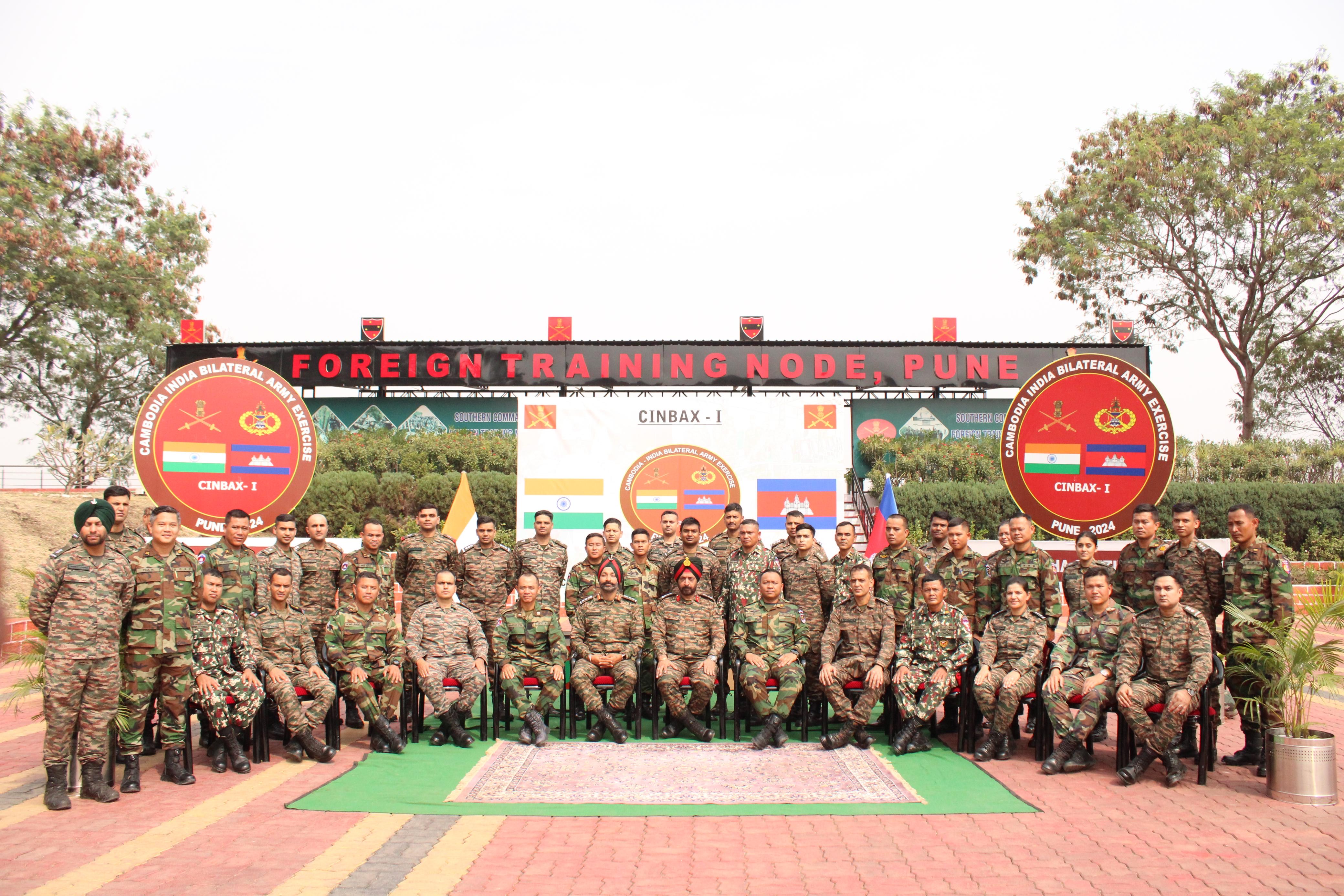
- 01 Dec 2024
In News:
The first edition of CINBAX (Counter-Terrorism Counter-Bio-Terrorism and Intelligence Operations Exercise) was launched on December 1, 2024, at the Foreign Training Node, Pune.
Key Details:
- Participants: 20 personnel from each side – the Indian Army and the Cambodian Army – focusing on enhancing cooperation for UN peacekeeping operations.
- Objective:
- Enhancing Trust and Interoperability: CINBAX aims to foster mutual trust, build camaraderie, and improve operational efficiency between the two armies in conducting peacekeeping operations under UN guidelines.
- Focus Areas: Joint Counter-Terrorism (CT) operations, Intelligence, Surveillance, and Reconnaissance (ISR), cyber warfare, logistics, casualty management, and disaster relief operations.
- Phases of the Exercise:
- Phase I: Orientation for Counter-Terrorism operations in the context of UN peacekeeping missions.
- Phase II: Conduct of tabletop exercises to simulate and plan response scenarios.
- Phase III: Finalization of plans and review of lessons learned, focusing on operational strategies and tactical decision-making.
- Key Topics Covered:
- Discussions on setting up a Joint Training Task Force for intelligence, surveillance, and reconnaissance.
- Exploring cyber warfare, hybrid warfare, and unconventional tactics.
- Strategies for managing logistics, casualties, and coordination during Humanitarian Assistance and Disaster Relief (HADR) operations.
- Promotion of Indigenous Defence Equipment:
- The exercise will showcase Indian-made weapons and defence equipment, supporting India’s commitment to Atmanirbhar Bharat (self-reliance in defence production).
- Objective: To highlight India's advanced military technology and indigenous defence capabilities.
- Significance for India-Cambodia Relations:
- The exercise strengthens military ties between India and Cambodia, contributing to improved cooperation in regional peacekeeping efforts.
- CINBAX marks a significant milestone in India-Cambodiadefence collaboration and sets the stage for future joint operations.
India-Cambodia Bilateral Relations
- Historical Context:
- India and Cambodia share strong religious, cultural, and linguistic ties, with Hindu rituals influencing Cambodian culture and Sanskrit and Khmer sharing common words.
- Diplomatic relations were established in 1952, even before Cambodia's independence from France.
- Key Developments:
- 1954: Prime Minister Jawaharlal Nehru visited Cambodia, initiating strong diplomatic ties, particularly during the Non-Aligned Movement.
- Post-1970s: India played a pivotal role in Cambodia's recovery from the Khmer Rouge regime. India was the first democratic country to recognize the Heng Samrin regime in 1981 and contributed to Cambodia's political reconciliation.
- 1980s: India facilitated dialogue for the Paris Peace Accord and contributed to the success of UNTAC elections in 1993.
- Strategic and Economic Cooperation:
- Defence: Enhanced cooperation in defence capacity building, military training, and infrastructure development.
- Trade: India exports pharmaceuticals, bovine meat, automobiles, and leather products to Cambodia. In return, Cambodia exports organic chemicals, apparel, and footwear to India.
- Mekong-Ganga Cooperation (MGC): Established in 2000, MGC includes Cambodia and aims to enhance cooperation in sectors like trade, education, tourism, and cultural exchanges.
- Recent Collaboration:
- India has extended financial assistance for infrastructure projects in Cambodia, especially in restoring and conserving cultural heritage sites like Angkor Wat.
- MoUs signed in bilateral cooperation, cultural exchanges, and development projects highlight the growing India-Cambodia strategic partnership.
Key Highlights on India’s Horticulture and Plant Health Management Initiatives
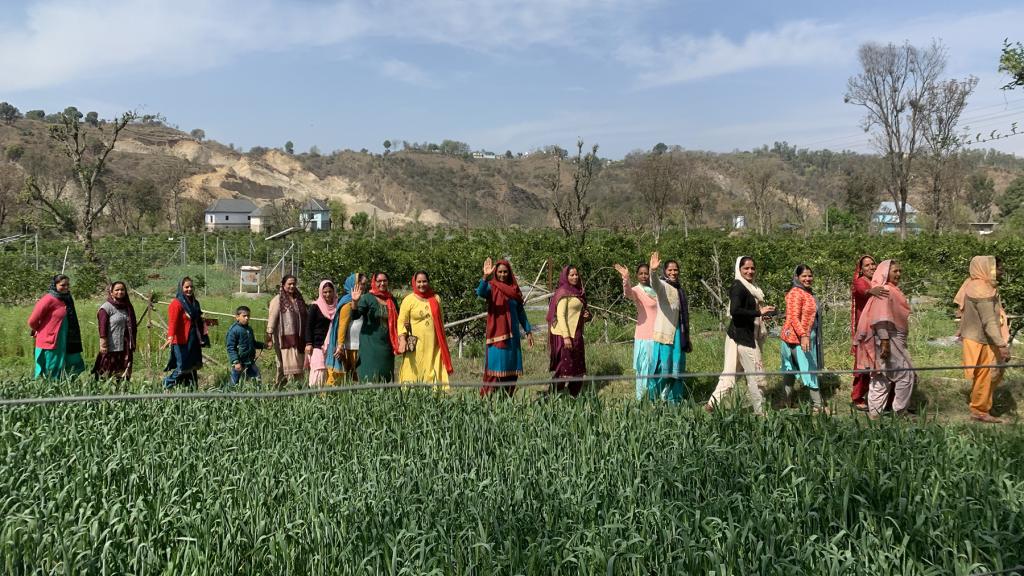
- 01 Dec 2024
In News:
Government of India and ADB sign $98 million loan to promote plant health management in India’s horticulture.
Key Highlights:
$98 Million Loan Agreement with ADB:
- India and the Asian Development Bank (ADB) signed a $98 million loan to enhance horticulture productivity and resilience.
- Objective: Improve farmers' access to certified, disease-free planting materials, which will increase crop yield, quality, and climate resilience.
- Focus Areas: The project aligns with India’s Atmanirbhar Clean Plant Programme (CPP), aiming to strengthen plant health management in horticulture.
Atmanirbhar Clean Plant Programme (CPP):
- Implemented under MIDH: The Clean Plant Programme is part of the Mission for Integrated Development of Horticulture (MIDH).
- Goal: To provide virus-free, high-quality planting materials to farmers, boosting horticultural crop yields and promoting climate-resilient varieties.
- Implementation Period: 2024-2030, with 50% financial support from ADB.
- Key Components:
- Establishment of 9 Clean Plant Centers (CPCs) with state-of-the-art diagnostic, therapeutic, and tissue culture laboratories.
- Certification Framework: Developing a regulatory framework under the Seeds Act 1966 to certify clean plants.
- Support to Nurseries: Infrastructure development for large-scale nurseries.
- Significance: The programme strengthens India's self-reliance in horticulture and enhances adaptability to climate change impacts.
Mission for Integrated Development of Horticulture (MIDH):
- Nodal Ministry: Ministry of Agriculture and Farmers Welfare.
- Focus: Holistic development of the horticulture sector, including fruits, vegetables, mushrooms, spices, and more.
- Funding Pattern:
- General States: 60% by Government of India (GoI), 40% by State Governments.
- North-Eastern and Himalayan States: 90% by GoI.
Horticulture Sector at a Glance:
- Contribution to Agricultural GDP: Accounts for 33% of the gross value.
- Land Coverage: Occupies 18% of agricultural land in India.
- Global Standing: India is the second-largest producer of fruits and vegetables globally.
- Surpassing Food Grains: Horticulture production exceeds food grain production, occupying much less land (25.66 million hectares vs. 127.6 million hectares for food grains).
Key Benefits of the CPP:
- Climate Resilience: Promotes climate-resilient plant varieties and helps farmers adapt to climate change.
- Innovation: Encourages the use of advanced testing techniques and builds institutional capacity.
- Long-term Impact: Expected to improve sustainability, productivity, and the economic well-being of farmers.
Additional Horticulture Initiatives:
- CHAMAN (Horticulture Assessment using Geo-informatics): A programme to estimate area and production of horticultural crops using scientific methods.
- Kisan Rail Services: Facilitates transportation of perishable horticultural products like fruits and vegetables.
- Capital Investment Subsidy Scheme: By the National Horticulture Board to support the sector’s growth.
Grievance Redressal Assessment and Index (GRAI) 2023
- 01 Dec 2024
In News:
- It was launched by Dr. Jitendra Singh, the Union Minister of State for Science & Technology, Earth Sciences, PMO, Personnel, Public Grievances, Pensions, Atomic Energy, and Space, along with Shri V. Srinivas, the Secretary of the Department of Administrative Reforms and Public Grievances (DARPG).
- This initiative, conceptualized by DARPG, aims to evaluate and rank central Ministries and Departments based on their grievance redressal mechanisms.
Key Aspects of GRAI 2023:
- Objective: GRAI 2023 was designed to provide a comparative assessment of Ministries and Departments based on their grievance redressal systems. It was created based on recommendations from the Parliamentary Standing Committee of the Ministry of Personnel, Public Grievances, and Pensions.
- Assessment Method: The index evaluates 89 Central Ministries and Departments across four dimensions:efficiency, feedback, domain&organisational Commitment
- It is calculated using data from the Centralised Public Grievance Redressal and Management System (CPGRAMS) from January to December 2023. Ministries are grouped into three categories based on the number of grievances received in 2023:
- Group A: Ministries/Departments with more than 10,000 grievances (28 Ministries/Departments)
- Group B: Ministries/Departments with 2,000 to 9,999 grievances (33 Ministries/Departments)
- Group C: Ministries/Departments with fewer than 2,000 grievances (28 Ministries/Departments)
- Top Performers:
- Group A: The Department of Agriculture and Farmers Welfare topped the rankings.
- Group B: The Office of the Comptroller & Auditor General of India led.
- Group C: The Department of Investment & Public Asset Management ranked first.
- It is calculated using data from the Centralised Public Grievance Redressal and Management System (CPGRAMS) from January to December 2023. Ministries are grouped into three categories based on the number of grievances received in 2023:
- Analysis: GRAI 2023 includes an in-depth analysis of the root causes of effective grievance redressal for each Ministry/Department, presented in a color-coded, easily understandable format.
- Advancements: The report outlines a roadmap for improving grievance redressal, emphasizing:
- Utilization of advanced technologies such as AI and Machine Learning (ML) for predictive analytics and data analysis.
- The introduction of features like IGMS 2.0 and TreeDashboard within CPGRAMS.
- Improved training for Grievance Redressal Officers (GROs) and more rigorous audits to increase accountability.
- Expansion of CPGRAMS integration to local governments, enhancing the grievance redressal system across all levels of governance.
Commonwealth Secretariat recognized CPGRAMS as a best practice in grievance redressal at its meeting in April 2024.
SASCI Scheme for Tourism Development
- 01 Dec 2024
In News:
Centre clears scheme for development of 40 tourist destinations across 23 States at a cost of ?3,295 crore.
Key Details:
- Focus Areas: The scheme encourages the development of lesser-known destinations such as Bateshwar (Uttar Pradesh), Ponda (Goa), Gandikota (Andhra Pradesh), and Porbandar (Gujarat) to reduce overcrowding at popular sites.
- Implementation Timeline: Projects must be completed within two years, with funding released in stages until March 2026.
- Key Features:
- Long-term interest-free loans for 50 years.
- States responsible for project execution and maintenance, often through public-private partnerships (PPP).
- The Ministry of Tourism will monitor progress, and 66% of the funds have already been released.
- Emphasis on sustainability and boosting local economies by creating jobs through tourism.
- States must provide land at no cost and ensure proper infrastructure like safety, connectivity, and utilities.
Selection Criteria for Projects:
- Consultation Process: Detailed regional consultations led to the selection of 40 projects from 87 proposals received by the Ministry of Tourism. West Bengal was the only state not submitting proposals.
- Evaluation Criteria: Projects were evaluated based on:
- Connectivity, tourism potential, and ecosystem.
- Financial viability and sustainability.
- Impact on local economy and job creation.
- Funding Pattern:
- A maximum of ?100 crore for each project, with higher funding considered for exceptional projects.
- Total funding capped at ?250 crore per state, allocated on a first-come, first-served basis.
Importance of the Scheme:
- Economic Growth & Employment: Projects are designed to stimulate local economies, create employment, and promote sustainable tourism.
- Global Branding: The scheme aims to brand and market tourist destinations on a global scale.
- Tourism Infrastructure Growth: It aims to improve the entire tourism value chain, including transportation, accommodation, activities, and services.
Tourism Sector Overview:
- Current Status:
- India ranks 39th among 119 countries in the Travel and Tourism Development Index (TTDI) 2024.
- Foreign Tourist Arrivals (FTAs) increased by 47.9% in 2023, with 9.52 million tourists.
- Tourism contributed 5% to India’s GDP in 2022-23 and created 76.17 million direct and indirect jobs.
- India earned ?2.3 lakh crore in foreign exchange in 2023 through tourism.
- Projected revenue from tourism to exceed $59 billion by 2028.
- Initiatives for Promotion:
- Swadesh Darshan Scheme: To develop theme-based circuits.
- Dekho Apna Desh Initiative (2020): Promotes domestic tourism.
- PRASHAD & HRIDAY Schemes: Focus on pilgrimage and heritage city development.
MGNREGA Job Card Deletions Issue:
- Context: A significant surge in deletions of job cards under MGNREGA (Mahatma Gandhi National Rural Employment Guarantee Act) raised concerns over transparency and workers’ rights.
- Reasons for Deletion:
- Permanent migration, duplicate cards, forged documents, and refusal to work.
- Aadhaar-based payment system (ABPS) implementation led to deletions for non-linked cards.
- Implications:
- Violation of workers’ legal right to employment, especially when deletions were made without due process.
- The "Not willing to work" designation undermines livelihood opportunities, especially in high unemployment rural areas.
- Recommendations for Reform:
- Strengthening verification processes and ensuring deletions follow due procedure.
- Empowering Gram Sabhas to review and approve deletions.
- Regular audits and better grievance redressal mechanisms.
Other Government Initiatives in Tourism:
- National Mission on Pilgrimage Rejuvenation and Spiritual, Heritage Augmentation Drive (PRASHAD): For holistic and sustainable development of pilgrimage tourism.
- Incredible India & E-Visa Initiatives: To attract more foreign tourists.
- Regional Connectivity Scheme (UDAN): Enhances air connectivity to remote tourist destinations.
- National Heritage City Development and Augmentation Yojana (HRIDAY): Preserves and rejuvenates heritage sites.
13th National Seed Congress (NSC)

- 30 Nov 2024
In News:
- The 13th National Seed Congress (NSC), organized by the Ministry of Agriculture & Farmers' Welfare, concluded with significant discussions and outcomes focused on advancing India's seed sector.
- The theme for this year's congress, held in Varanasi, was "Innovating for a Sustainable Seed Ecosystem."
Key Highlights:
- Focus Areas:
- Seed Technologies and Biofortification: Emphasis on high-nutrition seeds like iron and zinc-enriched rice and Vitamin A-rich crops to combat malnutrition.
- Climate-Resilient Agriculture: Promoting practices like Direct Seeded Rice (DSR) and the development of stress-tolerant seed varieties to withstand climate change.
- Challenges in India’s Seed Ecosystem:
- Seed Replacement Rate (SRR): SRR in India is around 15-20%, with 100% for hybrid seeds, pointing to the need for higher adoption of certified seeds.
- Monoculture and Seed Market Monopoly: Issues like over-reliance on Bt cotton and domination by multinational companies (e.g., Bayer) in seed markets.
- Government Initiatives:
- National Seed Corporation (NSC): Produces foundation and certified seeds for over 600 varieties.
- Seed Village Programme (Beej Gram Yojana): Focus on improving the quality of farm-saved seeds.
- National Seed Reserve: Ensures seed availability during climatic disruptions.
- Policy Discussions:
- Proposed Seeds Bill: A new bill to regulate seed quality and promote sustainable practices.
- Public-Private Partnerships: Strengthening collaborations to improve seed production, accessibility, and quality.
- Outcomes:
- Biofortified Seeds: Increased development and distribution of nutrient-rich seeds.
- Climate-Resilient Seed Systems: Enhanced focus on developing crops that can withstand climate challenges.
- Public-Private Partnerships: Strengthening collaborations in seed technology and policy reform.
U.N. Peacebuilding Commission
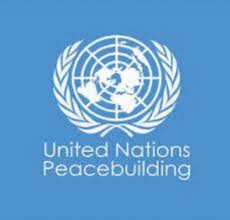
- 30 Nov 2024
In News:
India has been re-elected to the United Nations Peacebuilding Commission (PBC) for the term 2025–2026, continuing its strong commitment to global peace and stability.
UN Peacebuilding Commission (PBC)
It is an advisory body established by the UN General Assembly and UN Security Council in 2005. It is tasked with supporting peace efforts in conflict-affected countries by advising and recommending strategies for post-conflict recovery and long-term peacebuilding.
Composition of PBC:
- The PBC is composed of 31 member states, elected from the General Assembly, Security Council, and Economic and Social Council.
- It includes key financial and troop-contributing countries, which play a central role in shaping global peacebuilding initiatives.
Key Mandates of the PBC
- Coordination of Resources and Strategies:The Commission brings together all relevant actors to propose integrated strategies for post-conflict recovery and peacebuilding.
- Reconstruction and Development:It focuses on rebuilding conflict-affected countries through institution-building and supporting sustainable development efforts.
- Improving Coordination:The PBC ensures better coordination within and outside the UN, develops best practices, and secures predictable financing for early recovery initiatives.
- Sustaining Peace:The Commission promotes sustained international attention to peacebuilding efforts and offers political support to countries emerging from conflict, with their consent.
- Integrated Approach:The PBC advocates for an integrated approach that links security, development, and human rights as interrelated and mutually reinforcing.
- Bridging Role:It serves as a platform to connect UN bodies, Member States, national authorities, civil society, and other stakeholders, sharing good practices in peacebuilding.
India’s Contributions to UN Peacebuilding and Peacekeeping
India has been at the forefront of UN peacebuilding initiatives due to its long-standing commitment to international peace and stability.
- Largest Contributor of Personnel:India is one of the largest contributors of uniformed personnel to UN Peacekeeping. Currently, around 6,000 Indian military and police personnel are deployed across multiple missions in Abyei, Central African Republic, Cyprus, Democratic Republic of Congo, Lebanon, Middle East, Somalia, South Sudan, and Western Sahara.
- Sacrifices in Service:India holds the tragic distinction of having lost over 180 peacekeepers, the highest number from any troop-contributing nation. These sacrifices reflect India's enduring commitment to global peace.
- Financial Support:India contributes to the Peacebuilding Fund, the primary financial instrument for conflict prevention and peacebuilding, which supports countries transitioning from conflict to peace.
- Championing South-South Cooperation:India has actively promoted South-South cooperation, a model for post-conflict recovery that emphasizes shared learning and capacity-building among developing nations.
- Women in UN Peacekeeping:India has led efforts for gender parity in UN peacekeeping. In 2007, India became the first country to deploy an all-women contingent to a UN peacekeeping mission. It has since deployed Female Engagement Teams (FETs) and Female Formed Police Units (FFPUs) in Lebanon and the Democratic Republic of Congo.
- Training and Capacity Building:India has invested in capacity development for both the UN and host nations. The Centre for UN Peacekeeping (CUNPK) in New Delhi, established by the Indian Army, trains over 12,000 troops annually in peacekeeping operations. India also deploys Mobile Training Teams to share best practices with other countries.
India’s Pledges at the UN Peacekeeping Ministerial (2023)
At the UN Peacekeeping Ministerial held in Accra, Ghana (December 2023), India made significant pledges:
- To contribute an Infantry Battalion Group, along with various sub-groups and pre-deployment training courses, for the next two years.
- India’s ongoing commitment to strengthening peacekeeping efforts and supporting the UN’s peacebuilding agenda was reaffirmed.
Global Engagement Scheme
- 30 Nov 2024
In News:
- The Ministry of Culture plays a pivotal role in promoting India’s rich cultural heritage across the globe through its Global Engagement Scheme.
- The scheme is designed to enhance India's cultural image internationally while fostering people-to-people connections and strengthening bilateral cultural ties with other nations.
- The scheme has three key components: Festival of India, Grant-in-aid to Indo-Foreign Friendship Cultural Societies, and Contribution Grants.
Key Components of the Global Engagement Scheme:
- Festival of India (FoI):
- Purpose: The Festival of India is organized abroad to celebrate and promote India's diverse culture. It provides a platform for artists from various cultural fields, including Folk Art (folk music, dance, theatre, puppetry), Classical and Traditional Dance, Classical and Semi-Classical Music, Experimental/Contemporary Dance, and Theatre.
- Impact: Since 2013-14, 62 Festivals of India have been held in different countries, with over 2,348 artists, including folk artists, participating. These festivals serve as a means to promote Indian folk art, culture, and music internationally.
- Artist Participation: Folk artists are remunerated with a performance fee of ?35,000 for the leader/main artist and ?7,000 for accompanying artists per performance.
- Grant-in-aid to Indo-Foreign Friendship Cultural Societies:
- Objective: This scheme supports cultural societies abroad that aim to strengthen cultural exchanges and promote Indian art forms. Grants are provided to these societies to organize various cultural programs and activities, fostering closer cultural ties between India and the host countries.
- Support to Folk Artists: This scheme also aids in bringing folk art to the global stage, showcasing India's traditional performances.
- Contribution Grant:
- Objective: The contribution grant is used for India’s membership in international organizations like UNESCO, ICOM, and the World Heritage Fund. This component also facilitates Indian participation in international meetings and helps host global events, further showcasing India’s cultural wealth.
Support for Veteran Artists:
In addition to promoting folk culture globally, the Ministry of Culture supports veteran artists through the Financial Assistance for Veteran Artists scheme. This initiative is aimed at supporting elderly and economically disadvantaged artists (aged 60 and above) who have made significant contributions to their respective art forms, including folk art.
- Financial Support: Artists selected under this scheme receive up to ?6,000 per month, adjusted for any state pension they may already receive.
Regional Contributions:
- The Ministry has empaneled folk artists and groups across India for participation in these international cultural exchanges. For instance, two folk artists/groups and one Kathak artist from Uttarakhand are currently empaneled.
- Notably, a troupe from Uttarakhand participated in the Freedom 70 Cultural Event in Cuba and the Dominican Republic in August 2017, showcasing the diversity of Indian folk art.
- The Financial Assistance for Veteran Artists has also benefitted several artists from Uttarakhand, with four artists from the state receiving support over the past two years.
Mahabodhi Mahotsav at Sanchi
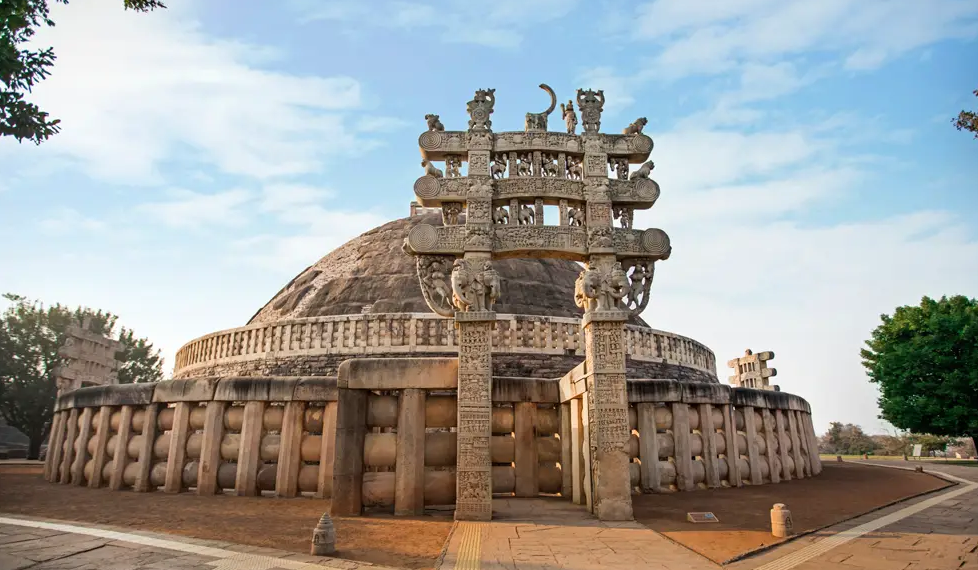
- 30 Nov 2024
In News:
A two-day Mahabodhi Mahotsav is currently being held at the Great Stupa in Sanchi, Madhya Pradesh, a UNESCO World Heritage Site.
Key Highlights:
- The festival will include religious ceremonies and cultural activities centered around the relics of Lord Buddha’s chief disciples, Sariputra and Maudgalyayana.
- Cultural Significance: The Mahotsav serves as a platform for celebrating and reaffirming the cultural and spiritual heritage of the region, with a focus on the teachings of Lord Buddha.
About Sanchi Stupa:
Sanchi Stupa is one of the oldest and most significant monuments of Buddhist architecture in India. It has stood as a symbol of Buddhist history, spirituality, and culture for over two millennia.
- Historical Importance:Commissioned by Emperor Ashoka in the 3rd century BCE, the stupa was later expanded by the Shunga and Satavahana rulers. It stands as a testament to the spread of Buddhism across India and beyond.
- Architectural Features:
- Hemispherical Dome (Anda): The large dome represents the universe, encapsulating the essence of Buddhist cosmology.
- Chatras: The umbrella-like structures on top of the dome symbolize divine protection and royalty.
- Harmika: A small balcony on the dome, which is considered the abode of the gods.
- Medhi: The base of the stupa, which stores sacred relics.
- Toranas: Four intricately carved gateways that depict scenes from the life of Buddha and various Jataka tales. These gateways point to the four cardinal directions, symbolizing the universality of Buddha’s teachings.
- Vedica: The railings surrounding the stupa serve as sacred enclosures.
- Paradakshinapatha: Pathways for circumambulation, allowing devotees to walk around the stupa as a sign of respect.
- Symbolism:The stupa’s architecture is an example of early Buddhist aniconism, where the Buddha is not directly depicted but is represented symbolically through footprints, wheels, or empty thrones.
- Inscriptions:The stupa contains important inscriptions, including the Ashokan Lion Capital and inscriptions in Brahmi and Kharosthi scripts, reflecting the historical significance of the site.
- UNESCO World Heritage Status:In 1989, Sanchi Stupa was declared a UNESCO World Heritage Site, recognizing its exceptional historical and cultural importance as a center for Buddhist art, architecture, and philosophy.
Significance of the Mahabodhi Mahotsav:
The Mahabodhi Mahotsav at Sanchi not only provides a spiritual experience but also highlights the historical and cultural legacy of Buddhism in India. The event brings attention to the preservation and promotion of Buddhist heritage, reflecting India’s rich diversity and commitment to maintaining its ancient traditions. Through this festival, Sanchi continues to be a center of pilgrimage and learning, attracting visitors from around the world who seek to understand and experience the teachings of Lord Buddha.
Flexible UG Degree Completion Norms
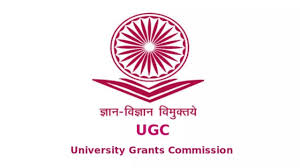
- 30 Nov 2024
In News:
- The University Grants Commission (UGC) has approved new guidelines for undergraduate (UG) degree completion, offering flexibility in the duration of academic programs.
Key Details:
- Two Options for Degree Completion:
- Accelerated Degree Programme:Students with exceptional academic performance or those completing additional credits can graduate earlier than the standard duration.
- Extended Degree Programme:Students facing personal, financial, or academic challenges can extend the time for degree completion without facing penalties.
- Objective:
- Enhance flexibility and a student-centric approach to higher education.
- Address challenges like balancing education with personal or professional commitments.
- Institutional Autonomy:Higher Education Institutions (HEIs) can implement these options based on available infrastructure and academic resources.
- Recognition of Flexibility:Degrees completed earlier or later will be treated on par with those completed within the standard duration.
- Alignment with Global Trends:This initiative aligns with global educational trends towards flexible learning paths.
- Support for Interdisciplinary Studies:The new regulations are expected to benefit students pursuing interdisciplinary studies or professional courses.
- NEP 2020 Alignment:The move is in line with the National Education Policy (NEP) 2020, which promotes learner-centric education and skill development.
- Impact:The decision is likely to provide more options for students, making higher education more accessible and tailored to individual needs.
Ngada Festival

- 29 Nov 2024
In News:
The Rengma Naga tribe concluded a two-day celebration of the Ngada festival-cum-Mini Hornbill Festival at the Tseminyu RSA ground in Nagaland.
Ngada Festival Overview:
- Celebration: It is an annual celebration observed by the Rengma Naga tribe, marking the end of the agricultural cycle.
- Duration: Typically, an eight-day festival, it is celebrated towards the end of November.
- Significance: It is a festival of thanksgiving, joy, and cultural unity, with a focus on gratitude for the harvest and remembrance of departed souls.
Cultural and Ritual Aspects:
- Rituals: The festival involves rituals for protection from misfortunes, such as fire and evil spirits, as well as prayers for peace and prosperity in the community.
- Agricultural Link: The festival is celebrated after the harvest season, symbolizing the end of the agricultural cycle and the beginning of the storage of crops.
- Official Announcement: The village priest announces the start of the festival, and preparations begin shortly after.
Importance of Ngada:
- Gratitude for the Harvest: The festival is a celebration of the hard work of the agricultural year and the bountiful harvest.
- Cultural Identity: The festival serves as a vital reminder of the Rengma Naga’s cultural heritage and traditions, helping to preserve them for future generations.
- Symbol of Unity: It fosters cultural unity and strengthens community bonds within the tribe.
Tribal Demographics:
- Population: The Rengma Naga tribe has a population of around 62,951 in Nagaland and 22,000 in Assam (according to the 2011 Census of India).
- Ethnic Identity: The Rengmas belong to the Tibeto-Burman ethnic group and identify themselves as Njong or Injang.
Historical and Cultural Background:
- Migration: It is believed that the Rengmas, along with other Naga tribes, migrated from Southeast Asia, crossing the Yunnan Mountain ranges, and eventually settled in the upper Burma region.
- Slavery: Historically, slavery was practiced among the Rengmas, with slaves known as menugetenyu and it sakesa. However, by the time the British arrived, slavery was in decline, and no Rengma tribespeople were known to be slaves.
Economy:
- Agricultural Lifestyle: The Rengma Naga are primarily agriculturalists, relying on Jhum cultivation (shifting cultivation) and wet rice cultivation.
- Crops Grown: They grow staple crops like paddy, along with seasonal crops and fruits.
Religion:
- Traditional Beliefs: Traditionally, the Rengma Naga worship supernatural beings.
- Christianity: Today, most of the Rengma tribe has converted to Christianity.
Global Wage Report 2024-25
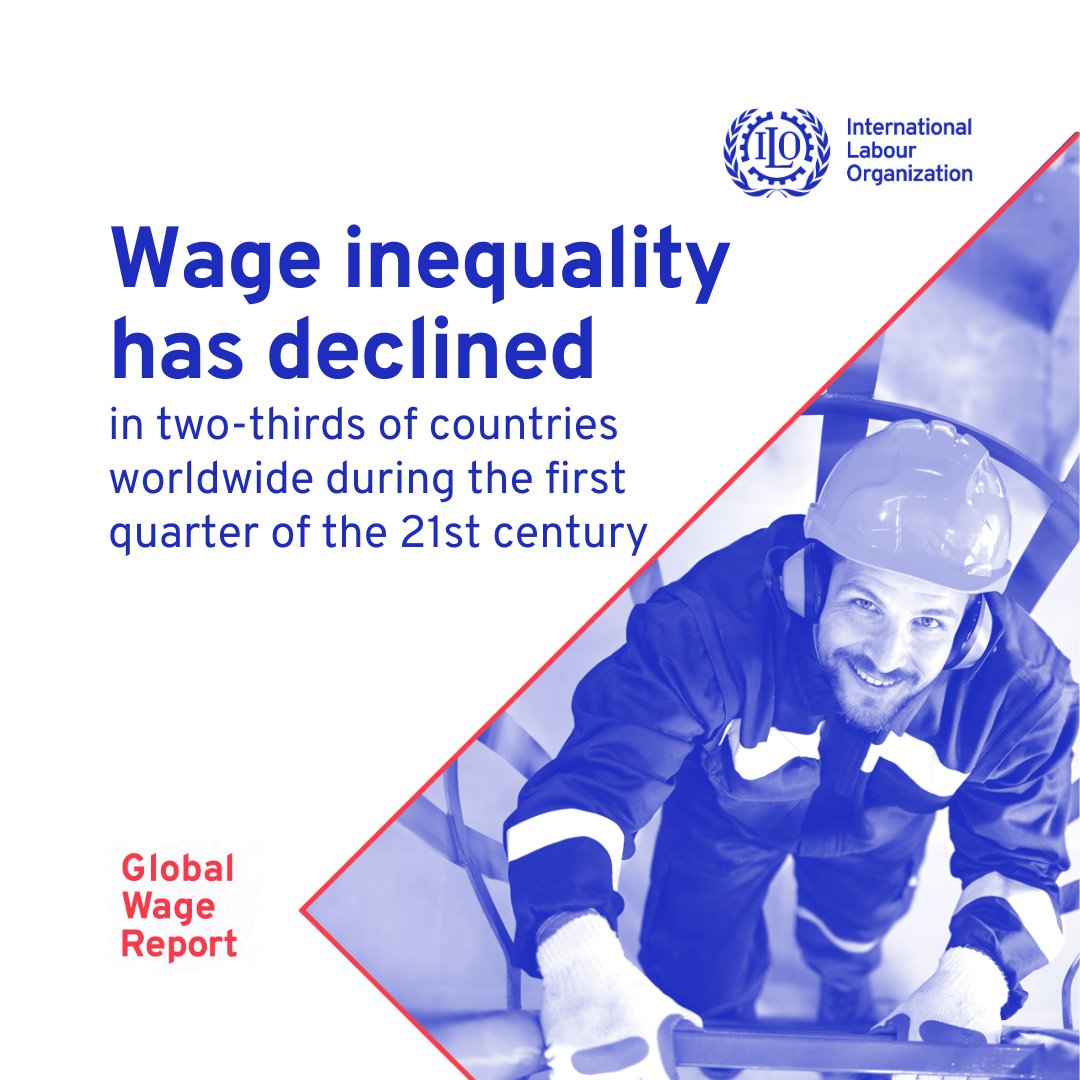
- 29 Nov 2024
In News:
A new report from the International Labour Organization (ILO) reveals that wage inequality has decreased in about two-thirds of all countries since 2000. Despite this positive trend, significant wage differentials persist worldwide.
Global Wage Inequality Trends:
- Wage inequality has decreased in about two-thirds of all countries since 2000.
- Average Annual Decrease in Wage Inequality:
- Ranges from 0.5 to 1.7% globally, depending on the measure used.
- More significant reductions have been observed in low-income countries, where the decrease has ranged from 3.2 to 9.6% over the past two decades.
- Wealthier Countries: Wage inequality has decreased at a slower pace:
- Upper-middle-income countries: annual decrease of 0.3 to 1.3%.
- High-income countries: annual decrease of 0.3 to 0.7%.
Global Real Wage Growth:
- Global real wages grew by 1.8% in 2023, with projections reaching 2.7% growth in 2024 (highest increase in over 15 years).
- This marks a recovery from the negative global wage growth of -0.9% in 2022 due to high inflation rates.
Regional Wage Growth:
- Emerging Economies: Saw stronger wage growth than advanced economies.
- Emerging G20 economies: 1.8% growth in 2022 and 6.0% growth in 2023.
- Advanced Economies: Faced real wage declines.
- G20 advanced economies: Declined by -2.8% in 2022 and -0.5% in 2023.
- Fastest Wage Growth: Observed in regions like Asia-Pacific, Central and Western Asia, and Eastern Europe.
Wage Inequality Persistence:
- Income Distribution: The lowest-paid 10% of workers earn just 0.5% of the global wage bill, while the highest-paid 10% earn nearly 38%.
- Wage Inequality in Low-Income Countries: Particularly high, with nearly 22% of wage workers classified as low-paid.
- Women and Informal Economy Workers: More likely to be among the lowest-paid workers, underscoring the need for targeted actions to close wage and employment gaps.
Non-Wage Workers:
- Globally, one in every three workers is a non-wage worker.
- In low- and middle-income countries, many workers are self-employed in the informal economy, which skews overall income inequality measures.
- Income inequality in these regions is higher when including self-employed workers, especially those in informal employment.
Policy Recommendations:
- Targeted Policies: To reduce wage inequality, countries need stronger wage policies and structural support for equitable growth.
- Focus Areas:
- Promote productivity and decent work.
- Formalization of the informal economy to help reduce income inequality.
- Inclusive Growth: The ILO emphasizes that national strategies should aim for inclusive economic growth to achieve fair wages and reduce wage gaps.
Key ILO recommendations include:
- Setting wages through social dialogue: wages should be set and adjusted through collective bargaining or agreed minimum wage systems involving governments, workers and employers.
- Taking an informed approach: wage-setting should take into account both the needs of workers and their families and economic factors.
- Promoting equality, and equal opportunity of treatment and outcomes: wage policies should support gender equality, equity and non-discrimination.
- Using strong data: decisions should be based on reliable data and statistics.
- Addressing root causes of low pay: national policies should reflect each country’s specific context and address the causes of low pay such as informality, low productivity and the under-valuing of jobs in sectors such as the care economy.
Mission Shukrayaan
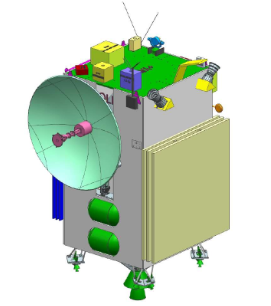
- 29 Nov 2024
In News:
ISRO received approval for its first Venus mission, Shukrayaan. The probe will undertake a detailed investigation of Venus, including its surface, atmosphere and geological structure.
Shukrayaan Mission (Venus Orbiter Mission):
- Launch Timeline: Scheduled for 2028.
- Objective: Investigate Venus to gather data on its surface, atmosphere, and geological structure.
- Scientific Focus: Study weather patterns, geological activities, and atmospheric composition (e.g., carbon dioxide and sulfuric acid clouds).
- Instrumentation: Equipped with synthetic aperture radar, infrared, and ultraviolet imaging devices to study Venus’s ionosphere.
- Significance: Offers global coverage of Venus, addressing gaps in previous missions' spatial coverage.
- Cost: Estimated at Rs 1,236 crore.
- Launch Vehicle: ISRO plans to use the LVM-3 (GSLV Mk III) rocket to launch the mission into an elliptical parking orbit (170 km x 36,000 km).
- Mission Data Processing: Data will be archived and disseminated through the Indian Space Science Data Center (ISSDC).
Chandrayaan 4 Mission:
- Collaborative Effort: Joint mission between India (ISRO) and Japan.
- Launch Objective: Land on the moon's south pole, with a focus on the region at 90°S (compared to previous missions at 69.3°S).
- Mission Details:
- Includes a rover weighing 350 kg (12 times heavier than previous rover).
- The rover will be equipped with advanced scientific tools for lunar exploration.
- Government Approval: Awaiting approval, with a target execution date of 2030.
Gaganyaan Mission (Human Spaceflight Program):
- Timeline: Unmanned flight in 2026, followed by a manned mission.
- Indian Space Station: Construction approved; to be completed by 2035, comprising five modules.
- Purpose: To serve as a transit facility for deep space exploration, including future lunar missions.
Mars Exploration Plans:
- Future Missions: Plans to send satellites to Mars and attempt a landing on the Martian surface.
- Significance: Demonstrates India’s growing ambitions in interplanetary exploration.
INSAT-4 Series of Satellites:
- Goal: Launch of new meteorological and oceanographic sensors to improve weather forecasts and disaster management.
- Technological Advancements: Need for India to catch up with global advancements in space-based sensors.
International Collaboration in Space:
- Chandrayaan 4: A collaboration between ISRO and Japan to explore the moon’s south pole, showcasing India's growing international cooperation in space exploration.
Strategic Importance of Shukrayaan:
- Contribution to Science: The mission’s global dataset will provide unique insights into Venus, enhancing the understanding of planetary atmospheres and geological processes.
- Potential for Discoveries: Research on Venus’s ionosphere and possible volcanic activity.
'Bal VivahMukt Bharat' Campaign
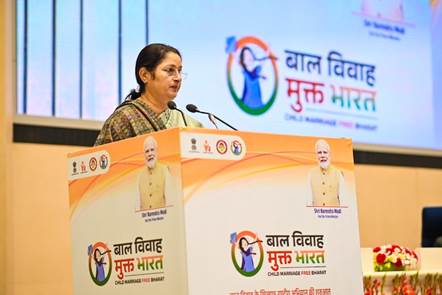
- 29 Nov 2024
In News:
- The Union Minister for Women and Child Development launched the “Bal VivahMukt Bharat” campaign aimed at eradicating child marriage in India.
- Goal: Reduce child marriage rates to below 5% by 2029.
- Focus: Engage multiple stakeholders, raise awareness, and leverage technology for eradication.
Target Areas:
- Target States: West Bengal, Bihar, Jharkhand, Rajasthan, Tripura, Assam, Andhra Pradesh.
- High-Burden Districts: Nearly 300 districts with higher rates of child marriage.
Child Marriage Free Bharat Portal:
- A digital platform to raise awareness, report cases, and track progress on child marriage prevention.
- Real-time tracking by Child Marriage Prohibition Officers (CMPOs).
Monitoring and Accountability:
- Central nodal officers and CMPOs will oversee the campaign’s implementation at state and district levels.
- The portal facilitates citizens’ participation by allowing complaints and providing information on legal remedies.
Progress and Impact:
- Child marriage rates have reduced from 47.4% (2005-06) to 23.3% (2019-21).
- The goal is to reduce these rates further to below 5% by 2029.
Awareness and Community Engagement:
- Public campaigns and community mobilization to challenge societal norms and change attitudes towards child marriage.
- The campaign will continue through various channels, including the BetiBachaoBetiPadhao initiative.
Legal Framework:
- Strengthening the Prohibition of Child Marriage Act (PCMA), 2006, which sets the legal marriage age at 18 for women and 21 for men.
- Penalties for those involved in child marriage include imprisonment and fines.
Key Challenges for Child Marriage:
- Poverty: Families may view early marriage as a financial relief.
- Cultural Norms: Deep-rooted societal beliefs about preserving family honor.
- Gender Inequality: Patriarchal systems view girls as burdens.
- Lack of Education: Limited access to schooling forces early marriages.
- Fear of Sexual Assault: Misguided belief that early marriage protects girls.
- Weak Law Enforcement: Corruption and inadequate resources hinder the law’s implementation.
- Pandemic Impact: Economic hardships during COVID-19 led to an increase in child marriages.
Related Initiatives:
- Prohibition of Child Marriage Act (PCMA), 2006: Strengthens child marriage laws and establishes CMPOs.
- Success Stories: Individuals like BuchaRamanamma, Durga, and Roshni Perween have inspired others by stopping their own child marriages and advocating for change.
Campaign and National Vision:
- The campaign aligns with the Prime Minister’s vision for a Viksit Bharat (Developed India) by 2047.
- It aims to empower women and girls, providing them with opportunities for education, health, and safety.
- Collective effort from the government, social organizations, and citizens is crucial to eliminating child marriage.
Eklavya Digital Platform
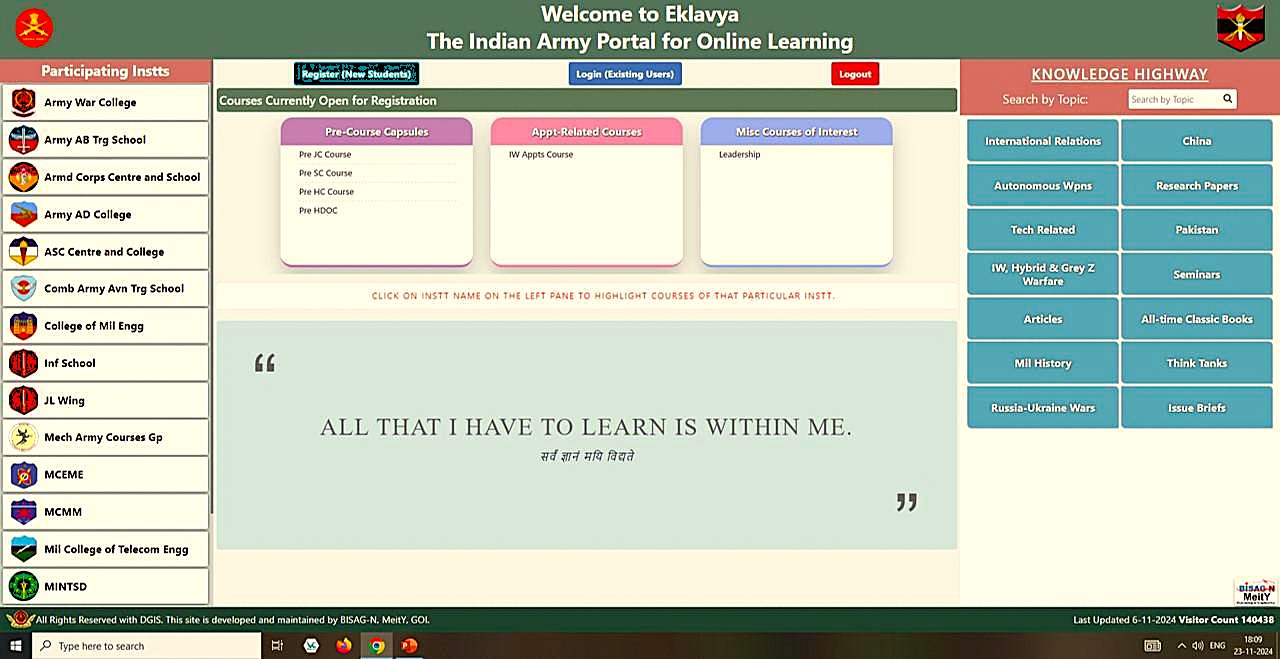
- 29 Nov 2024
In News:
- The Indian Army launched the “Eklavya” online learning platformnmunder the leadership of General Upendra Dwivedi, Chief of the Army Staff (COAS).
- It is part of the Army’s “Decade of Transformation” initiative and aligns with the theme for 2024, “Year of Technology Absorption.”
Platform Development:
- Developed by the Army Training Command (ATC) and sponsored by the Army War College.
- Created at zero cost in collaboration with the Bhaskaracharya National Institute of Space Applications and Geoinformatics (BISAG-N), Gandhinagar.
- Hosted on the Army Data Network with scalable architecture to integrate various training establishments.
Key Features:
- Supports multiple courses from 17Category ‘A’ Training Establishments of the Army.
- Allows student officers to register for several courses simultaneously.
- Aims to decongest physical courses and integrate contemporary, application-focused content.
Categories of Courses:
- Pre-Course Preparatory Capsules: Online study material for physical courses, allowing focus on contemporary topics during offline training.
- Appointment-Specific Courses: Online courses for officers appointed to specialized roles (e.g., information warfare, financial planning, etc.), helping them gain domain-specific expertise before posting.
- Professional Development Suite: Includes courses on strategy, leadership, operational art, finance, emerging technologies, etc., focusing on holistic officer development.
Knowledge Highway:
- A searchable database featuring journals, research papers, and articles to support continuous professional education and development.
Impact:
- Promotes continuous professional military education.
- Enhances the efficiency and specialization of officers, particularly in emerging domains.
- Streamlines training processes and integrates modern technology in the Army’s educational system.
Supreme Court Ruling on EVMs
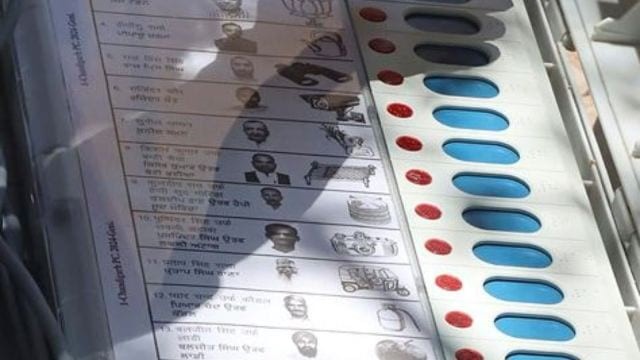
- 28 Nov 2024
In News:
The Supreme Court dismissed the PIL, remarking that EVMs are only questioned after electoral losses, not when elections are won. It emphasized that no evidence of tampering was found.
What Are EVMs and VVPATs?:
- EVMs: Electronic Voting Machines are used for conducting elections to the Parliament, state legislatures, and local bodies. They consist of two units: theControl Unit (operated by the polling officer) and the Ballot Unit (where voters cast their votes).
- VVPAT: The Voter Verifiable Paper Audit Trail enables voters to verify that their vote is recorded as cast. A slip is printed showing the candidate’s name, symbol, and serial number, visible for 7 seconds before being cut and stored in a sealed box.
Safeguards to Ensure EVM Integrity:
- Technical Safeguards:
- Microcontroller Security: EVMs use one-time programmable (OTP) microcontrollers, which cannot be altered after manufacturing.
- Standalone Operation: EVMs do not have wired or wireless connectivity, eliminating risks of remote tampering.
- Post-2013 Features: Advanced EVMs (M3) include tamper detection and mutual authentication protocols.
- Administrative Protocols:
- Randomized EVM Allocation: EVMs are randomly allocated to polling stations to avoid predetermined assignments.
- Mock Polls: Multiple mock polls are conducted to test the functionality of EVMs.
- Counting Procedures: EVMs are brought to counting tables under CCTV surveillance, and VVPAT slips are randomly cross-verified.
- Secure Storage: EVMs are stored under strict protocols, including double-lock systems, CCTV surveillance, and GPS-tracked transport.
Advantages of EVMs Over Ballot Papers:
- Elimination of Invalid Votes: EVMs ensure no invalid votes, a common problem with torn or mis-marked ballot papers.
- Prevention of Booth Capturing: EVMs restrict vote casting to 4 votes per minute, preventing fraudulent vote insertion.
- Accurate and Fast Counting: EVMs enable quick, error-free vote counting, reducing delays and human errors.
- Transparency: Voters can verify their votes through the VVPAT, and the vote count is displayed transparently without revealing candidate-wise results prematurely.
Evolution of EVMs in India:
- 1977: Concept of EVMs conceived.
- 1990: The Dinesh Goswami Committee recommended the use of EVMs.
- 2004: EVMs used nationwide in Lok Sabha elections.
- 2013: VVPAT was introduced to improve transparency.
- 2019: First nationwide use of EVMs backed by VVPAT.
India's Gig Economy
- 28 Nov 2024
In News:
The gig economy market is expected to grow at a compounded annual growth rate (CAGR) of 17 per cent to reach a gross volume of $455 billion by 2024, according to a white paper by the Forum for Progressive Gig Workers.
Key Sectors Supported by Gig Workers:
- E-commerce: Gig workers play a crucial role in driving growth in the e-commerce sector.
- Transportation and Delivery Services: These sectors are heavily dependent on gig workers for their operations and services.
Impact on Employment:
- Job Creation: The gig economy has the potential to create a significant number of jobs, especially in tier 2 and 3 cities, which are emerging as new growth hubs.
- Alternate Revenue Streams: Gig work provides diverse income opportunities for workers, especially for women, offering them a flexible mode of earning.
Contribution to GDP:
- The gig economy’s contribution is expected to add 1.25% to India’s GDP over time, highlighting its growing economic importance.
Technological Integration and Future Prospects:
- AI and Digital Innovation: Future growth is expected to be driven by the integration of artificial intelligence (AI), predictive analytics, and digital innovation, fostering sustainable and inclusive job opportunities.
Social and Economic Benefits:
- Women's Workforce Participation: The gig economy provides women with more earning opportunities and helps integrate them into the workforce.
- Welfare Initiatives: Platforms supporting gig workers are increasingly focusing on welfare initiatives, improving the overall working conditions in the sector.
Challenges and Opportunities:
- Challenges: The evolving dynamics between large companies and gig workers pose challenges in terms of worker rights and fair compensation.
- Opportunities: The growth of the gig economy presents opportunities for companies to innovate and create inclusive work environments, especially for underserved communities.
Future Developments:
- Formal Report: The Forum for Progressive Gig Workers plans to collaborate with global organizations to release a formal report with deeper insights and actionable recommendations for the future of gig work
Global Matchmaking Platform (GMP)
- 28 Nov 2024
In News:
- GMP was launched at COP29, on Energy Day, by the United Nations Industrial Development Organization (UNIDO) and the Climate Club.
- Aimed at accelerating industrial decarbonisation in heavy-emitting industries of emerging and developing economies (EMDEs).
- The platform addresses the annual funding gap of US$125 billion required to achieve net-zero emissions goals.
Key Highlights:
Support Mechanism:
- GMP operates as a support mechanism for the Climate Club, with the secretariat hosted by UNIDO.
- Activities are supported by the interim secretariat of the OECD and the International Energy Agency (IEA).
Key Objectives:
- Match country-specific decarbonisation needs with global technical and financial resources.
- Facilitate the decarbonisation of energy and emissions-intensive industrial sectors, such as steel, cement, chemicals, and aluminium.
- Offer assistance in policy development, technology transfer, and investment facilitation to promote low-carbon industrial practices.
Global Participation:
- Countries like Germany, Chile, Uruguay, Turkey, Bangladesh, and Indonesia are actively involved.
- Non-state actors include UNIDO, World Bank, Climate Investment Funds (CIF), and GIZ, supporting the platform’s initiatives.
Funding Gap:
- Industrial decarbonisation requires an increase in investments from US$15 billion (current) to US$70 billion by 2030, and US$125 billion by 2050, especially for sectors like steel and cement.
Climate Club Work Programme (2025-26):
- The GMP is part of the Climate Club's new work programme for 2025-26, focusing on:
- Advancing ambitious climate change mitigation policies.
- Transforming industries through decarbonisation.
- Boosting international climate cooperation.
Industrial Decarbonisation:
- Decarbonisation refers to reducing carbon dioxide (CO2) and greenhouse gas (GHG) emissions from industrial activities.
- Key sectors for decarbonisation include petroleum refining, chemical manufacturing, iron and steel, cement production, and the food and beverage sector.
Support for EMDEs:
- The platform focuses on helping emerging and developing economies overcome challenges such as lack of resources, technology, and capacity to adopt cleaner industrial methods.
- Climate finance is crucial to pilot and scale low-carbon technologies in these regions.
Future Role of GMP:
- The GMP will play a critical role in incorporating industrial decarbonisation into countries’ Nationally Determined Contributions (NDCs) for COP30.
- The platform aims to accelerate progress by connecting developing countries with finance, technology, and expertise to transition to low-emission industries.
E-Daakhil Portal
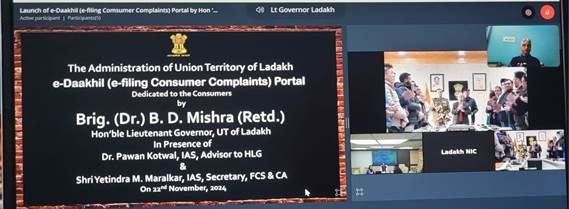
- 28 Nov 2024
In News:
- The E-Daakhil portal was launched by the Department of Consumer Affairs to promote consumer rights and ensure timely justice.
- The portal was launched nationwide with its final rollout in Ladakh on 22nd November 2024, making it operational across all states and union territories of India.
Background and Purpose:
- Introduced in September 2020, the portal was developed in response to the Consumer Protection Act 2019, which aims to address emerging consumer concerns.
- Aimed at providing a hassle-free, inexpensive, and speedy mechanism for filing consumer complaints, especially post the COVID-19 pandemic.
- E-Daakhil is an online platform that simplifies the grievance redressal process, allowing consumers to file complaints remotely, without the need for physical presence.
Portal Features:
- User-friendly interface: Simple and intuitive, allowing consumers to file and track complaints online.
- Registration process: Users can register through OTP on their mobile or an activation link via email.
- Paperless and transparent: The entire process, from filing complaints to tracking the case status, is digital and transparent.
- Consumers can file complaints, pay fees, and monitor the progress of their cases from the comfort of their homes.
Success and Impact:
- By the end of 2023, E-Daakhil was available in 35 states and union territories; with Ladakh being the latest addition in November 2024.
- Over 2.81 lakh users have registered, and 1.98 lakh cases have been filed, of which 38,453 cases have been disposed of.
Future Developments:
- E-Jagriti: A new initiative that will further streamline the case filing, tracking, and management process, reducing delays and paperwork.
- E-Jagriti aims to improve communication between parties, ensuring faster dispute resolution.
BioE3 Policy
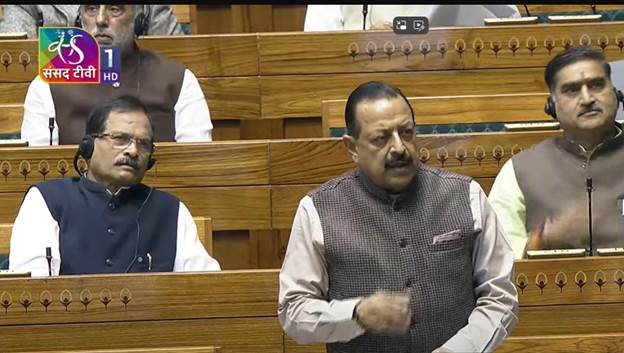
- 28 Nov 2024
In News:
The BioE3 Policy outlines guidelines and principles for enabling mechanisms for ‘Fostering High Performance Biomanufacturing’ in the country across diverse sectors.
Key Highlights:
Primary Objective:
- Set a framework for the adoption of advanced technologies and innovative research to promote biomanufacturing in India.
- Focus on enhancing efficiency, sustainability, and quality in biomanufacturing.
Alignment with National Goals:
- Supports India’s vision of Green Growth (Union Budget 2023-24) and Lifestyle for Environment (LiFE), promoting sustainability.
- Aligns with India’s goal of achieving a Net-Zero carbon economy.
- Supports the Biomanufacturing and Biofoundry initiative announced in the Interim Budget 2024-25.
Key Objectives:
- Revolutionize biomanufacturing for better product quality and environmental sustainability.
- Accelerate the development and commercialization of bio-based, high-value products.
- Foster high-performance biomanufacturing across diverse sectors.
Achievements of Indian Bioeconomy (2014-2023):
- Contribution to GDP: Bioeconomy contributes 4.25% to India’s GDP of $3.55 trillion (as of Dec 2023).
- Growth of Bioeconomy: From $10 billion in 2014 to $151 billion in 2023, surpassing 2025 target.
- Increase in Biotech Startups: From 50 startups in 2014 to 8,531 startups in 2023.
Implementation Strategy:
- Establish BioEnablers including Bio-AI Intelligence Hubs, Biofoundries, and Biomanufacturing Hubs across India.
- Bio-AI Intelligence Hubs will support research and innovation using data-driven approaches and AI to develop technologies for bio-based products.
- Biofoundries and Biomanufacturing Hubs will provide infrastructure to scale up bio-based technology for commercial applications.
Focus on Human Resource Development:
- Bio-Enablers will offer training and internships to build a skilled workforce with interdisciplinary and technical skills required for biomanufacturing.
Sectoral Focus Areas:
- Based on consultations, six thematic sectors of national importance have been identified for implementation:
- Bio-based chemicals and enzymes
- Functional foods and smart proteins
- Precision biotherapeutics
- Climate-resilient agriculture
- Carbon capture and utilization
- Futuristic marine and space research
- Sectoral Expert Committees are addressing challenges and gaps identified for each of these sectors.
Government Support:
- The DBT-BIRAC (Department of Biotechnology and Biotechnology Industry Research Assistance Council) has called for proposals to establish Biofoundries and Biomanufacturing Hubs in academia and industry.
- These hubs will support innovation and commercialization of biomanufacturing technologies.
National Mission on Natural Farming (NMNF)
- 27 Nov 2024
In News:
The Union Cabinet approved the launching of the National Mission on Natural Farming (NMNF) as a standalone Centrally Sponsored Scheme under the Ministry of Agriculture & Farmers' Welfare.
Key Highlights
Objective & Focus:
- Launch of NMNF by the Union Cabinet to promote chemical-free farming in India.
- Aim to improve soil health, reduce input costs, and produce nutritious food.
- Support the shift to natural farming (NF), emphasizing local knowledge and agro-ecological principles.
Financial Allocation:
- Total Outlay: ?2481 crore (Government of India share ?1584 crore, State share ?897 crore) until FY 2025-26.
Key Features of NMNF:
- Coverage: Targeting 15,000 clusters in Gram Panchayats, covering 7.5 lakh hectares and impacting 1 crore farmers.
- Bio-Input Resource Centres (BRCs): 10,000 BRCs to supply ready-to-use natural farming inputs.
- Krishi Vigyan Kendras (KVKs) and Agricultural Universities (AUs): Establishment of 2,000 model demonstration farms for hands-on training in natural farming techniques.
- Farmer Training: 18.75 lakh farmers to be trained in NF practices such as preparation of organic inputs like Jeevamrit and Beejamrit.
- Krishi Sakhis/CRPs: Deployment of 30,000 workers for farmer mobilization and awareness.
Implementation Strategy:
- Farmer Certification System: Providing easy, simple certification for marketing natural farming produce with dedicated branding.
- Monitoring: Real-time, geo-tagged monitoring of implementation through an online portal.
- Convergence with other government schemes and organizations for market linkages and support.
Natural Farming Practices:
- Zero Budget Natural Farming (ZBNF): Promote sustainable farming by using local livestock and diverse crop systems.
- Benefits: Reduce dependence on external inputs like chemical fertilizers and pesticides, rejuvenate soil quality, and increase resilience to climate risks (e.g., drought, floods).
- Encourage biodiversity, and improve soil carbon content and water-use efficiency.
Targeted Areas and Farmer Support:
- Focus on areas where NF practices are already being followed or where farmer producer organizations (FPOs) or self-help groups (SHGs) are active.
- Training through model demonstration farms will focus on practical, location-specific NF techniques tailored to regional agro-ecologies.
Impact on Agriculture and Environment:
- Environmental Impact: Encourages sustainable farming by reducing chemical exposure, improving soil health, and promoting climate resilience.
- Farmer Well-being: By reducing input costs and promoting nutritious food, it aims to improve farmer incomes and family health.
- Contributing to the long-term health of the environment, ensuring a healthy Mother Earth for future generations.
Challenges and Concerns:
- Soil Nutrient Compromise: Concerns that some crops, like rice, might require chemical fertilizers (e.g., NPK) for optimal growth, which may not be sufficiently replaced by organic manure alone.
- The shift to natural farming requires significant awareness and training to ensure sustainable and productive yields.
Institutional Framework:
- Ministry of Agriculture and Farmers’ Welfare is the implementing body.
- Collaboration with KVKs, AUs, and farmer organizations ensures grassroots level support and knowledge dissemination.
Extension of Ban on ULFA
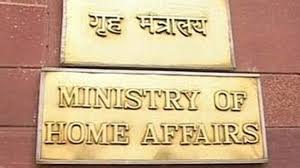
- 27 Nov 2024
In News:
- The Ministry of Home Affairs (MHA) extended the ban on United Liberation Front of Asom (ULFA) for five years under the Unlawful Activities Prevention Act (UAPA), 1967.
- The notification specifically includes all factions, wings, and front organizations associated with ULFA.
Reason for Extension:
- ULFA continues to pursue secessionist objectives (separation of Assam from India).
- The group is involved in criminal activities such as extortion, intimidation, and violent actions.
- ULFA has maintained links with other insurgent groups and continues to engage in illegal activities like the possession of arms and ammunition.
Peace Process:
- Pro-talks faction of ULFA, led by Arabinda Rajkhowa, signed a peace agreement with the central and Assam governments in December 2023.
- This faction has agreed to renounce violence, disband the organization, and join the democratic process.
- However, the hardline faction of ULFA, led by Paresh Baruah, remains active and continues its militant activities.
ULFA’s Formation and Objectives:
- ULFA was founded in 1979 with the goal of achieving the "restoration of Assam's sovereignty" through armed struggle.
- It has been a key player in the Assamese separatist movement for several decades.
Legal Framework:
- The UAPA (1967) empowers the government to declare an organization as unlawful or label individuals as terrorists if they engage in activities threatening India’s sovereignty, integrity, or promote terrorism and secession.
- The latest extension of the ban was made under Section 3(1) of UAPA.
Significance for Internal Security:
- This development is important for understanding insurgency and separatism in the Northeast and the government’s approach to national security and counterinsurgency.
- The ULFA issue highlights challenges in addressing regional insurgencies and the role of the UAPA in maintaining national integrity.
Socialist and Secular in Preamble

- 27 Nov 2024
In News:
Supreme Court upholds ‘secular, socialist’ in Preamble of the Constitution.
Key Highlights of the Supreme Court Judgment
- Judgment Overview:
- Supreme Court's Ruling: The Court upheld the inclusion of the terms ‘socialist’ and ‘secular’ in the Preamble of the Indian Constitution through the 42nd Amendment Act of 1976.
- Challenge: Petitioners, including BJP leader Subramanian Swamy, challenged the retrospective application of these terms, arguing they were not part of the original Preamble adopted in 1949.
- Court's Explanation:
- Socialist: The term represents a welfare state aimed at reducing inequality and ensuring social, political, and economic justice, but does not prescribe a specific economic policy (left or right).
- Secular: Denotes a state that treats all religions equally, ensuring religious freedom and neutrality in religious matters. It is linked to Articles 14, 15, and 16, which ensure equality and non-discrimination.
- Retrospective Application:The Court affirmed that Parliament’s amendment power under Article 368 extends to the Preamble, and the retrospective application of the terms was valid.
- Constitution as a ‘Living Document’:The Court emphasized that the Constitution is adaptable to societal changes and evolving needs. The inclusion of 'secular' and 'socialist' reflects India’s evolving democratic and social framework.
- Interpretation of Secularism and Socialism:
- Secularism in India refers to the state's neutral stance towards all religions, promoting religious harmony.
- Socialism signifies India’s commitment to ensuring equality of opportunity and promoting welfare policies, such as social justice and economic welfare.
Constitutional and Legal Framework
- Article 368: Grants Parliament the authority to amend the Constitution, including the Preamble. The Court affirmed that this power is unquestionable.
- Kesavananda Bharati Case (1973): Established the ‘basic structure doctrine,’ which means certain fundamental features of the Constitution cannot be altered. The inclusion of ‘secular’ and ‘socialist’ is in line with this basic structure.
- S.R. Bommai Case (1994): Reinforced the secular nature of the Indian state.
Preamble to the Constitution
- Definition: The Preamble is an introductory statement that outlines the fundamental values and goals of the Indian Constitution.
- Key Objectives: Justice (social, economic, political), Liberty (thought, expression, belief), Equality (status and opportunity), and Fraternity (national unity and dignity).
- Terms in the Preamble:
- Sovereign: India's independence in all matters.
- Socialist: Commitment to social justice and welfare.
- Secular: Equal respect for all religions.
- Democratic: Governance by the people, through elected representatives.
- Republic: Head of state elected, not hereditary.
42nd Amendment Act, 1976:
- Context: Introduced during the Emergency under Indira Gandhi's government.
- Key Changes: Added 'socialist' and 'secular' to the Preamble, revised 'Unity of the Nation' to 'Unity and Integrity of the Nation.'
- Significance: Strengthened constitutional values like inclusivity, equality, and justice.
Socialist and Secular Initiatives by Government
- Socialist Programs:
- MGNREGA: Rural employment guarantee.
- PDS: Food security system.
- Right to Education (RTE): Free, compulsory education.
- Housing Schemes: Awas Yojana for the economically weaker sections.
- Secular Programs:
- Minority Welfare: Scholarships and skill development.
- Religious Protection Laws: Protection of places of worship.
- Communal Violence Laws: Special courts for violence-related cases.
- Constitutional Safeguards: Equal rights for all religions under Articles 25-28.
Significance of the Supreme Court Judgment
- Reaffirmation of Constitutional Values: The inclusion of ‘socialist’ and ‘secular’ reinforces India’s commitment to equality, justice, and democratic principles.
- Legitimacy of Amendments: Affirms Parliament's constitutional power to amend the Preamble.
- Evolving Interpretation: Recognizes that the Constitution must evolve in response to societal and political changes.
Cyclone Fengal
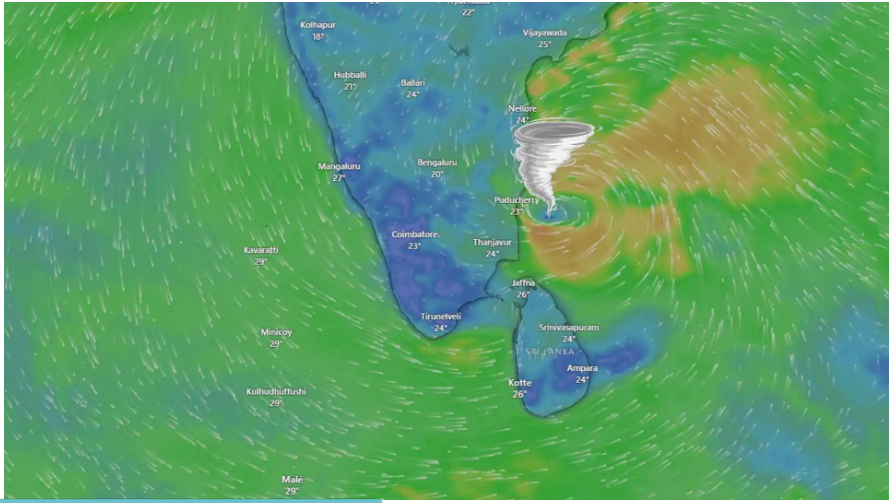
- 27 Nov 2024
In News:
- A deep depression in the Southwest Bay of Bengal, 800 km south of Chennai and 500 km from Nagapattinam, is expected to become Cyclone Fengal within the next 24 hours.
- It is anticipated to move north-northwest towards Tamil Nadu and Puducherry.
Key Highlights:
Cyclone Fengal Naming:
- If the depression intensifies into a cyclone, it will be named Fengal, as suggested by Saudi Arabia.
- Fengal will follow Cyclone Dana, which made landfall in Odisha in October 2024.
Cyclone Naming Process:
- Panel Members: Cyclones in the North Indian Ocean are named by a panel of 13 countries under the World Meteorological Organization (WMO) and United Nations Economic and Social Commission for Asia and the Pacific (UNESCAP).
- Member countries include Bangladesh, India, Iran, Maldives, Myanmar, Oman, Pakistan, Qatar, Saudi Arabia, Sri Lanka, Thailand, the UAE, and Yemen.
- Process: Each member submits a list of 13 names, creating a rotational naming system. Names are assigned sequentially as cyclones form. Once used, a name is retired and not reused.
Cyclone Fengal’s Potential Impact:
- Fengal is expected to bring strong winds, heavy rainfall, and possible coastal flooding.
- The system’s trajectory is being closely monitored, and preparedness measures are being implemented.
Terminology of Tropical Cyclones:
Terminology Region Impact Areas
Typhoons China Sea, Pacific Ocean Japan, China, Philippines
Hurricanes Caribbean Sea, Atlantic Ocean United States, Mexico,
Caribbean nations
Tornadoes Guinea Lands (West Africa), Southern USA Southern USA, West Africa
Willy-willies Northwestern Australia Australia (especially
Northwestern region)
Riyadh Design Law Treaty (DLT)
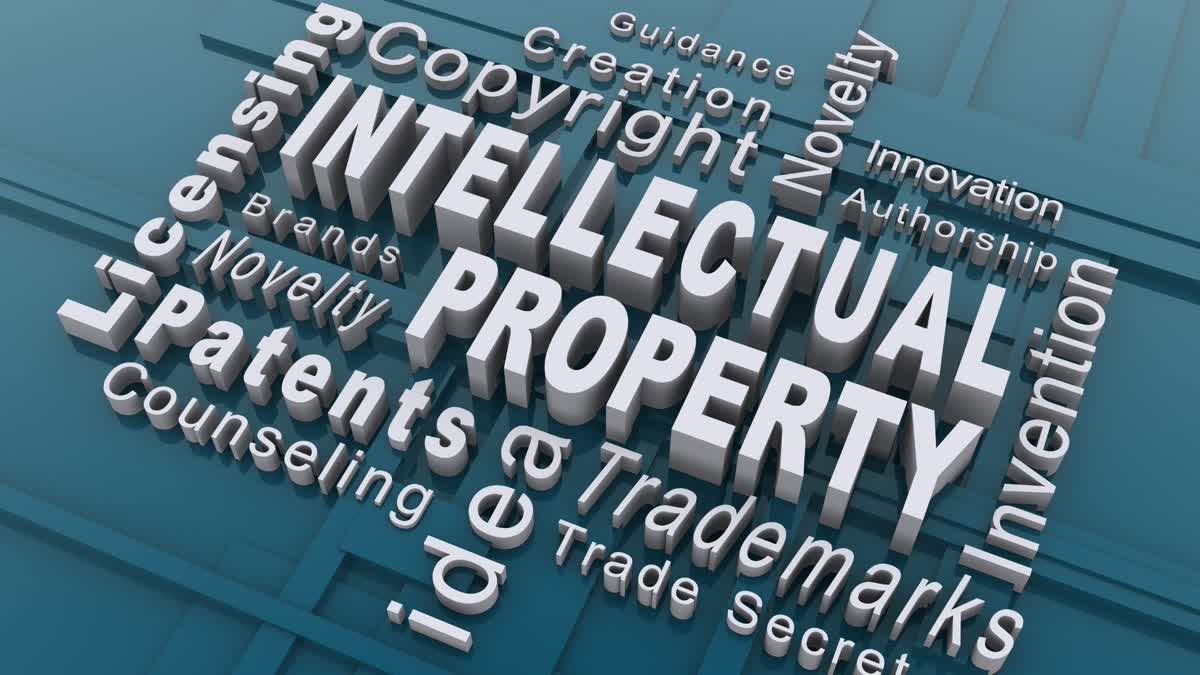
- 27 Nov 2024
In News:
- India reaffirms its commitment to inclusive growth and strengthening its intellectual property (IP) ecosystem.The signing of the treaty comes after nearly two decades of negotiations.
Key Highlights:
Purpose of the DLT:
- Aims to harmonize industrial design protection frameworks across multiple jurisdictions.
- Improves efficiency and accessibility of design registration processes.
Key Features of the DLT:
- Grace Period: A 12-month grace period after the first disclosure of the design, ensuring its validity for registration.
- Flexibility for Applicants: Provides relief measures such as relaxed deadlines, reinstatement of lost rights, and flexibility in adding priority claims.
- Simplified Processes: Includes simplified procedures for design renewals, assignment, and license recording.
- E-Filing Systems: Promotes the adoption of electronic filing systems and exchange of priority documents.
Benefits of DLT:
- Empowering SMEs and Startups: Helps small and medium-sized enterprises (SMEs) and startups protect designs globally, enhancing competitiveness and market growth.
- Reduced Administrative Burden: Standardizes procedures, making the design protection process less complex, more predictable, and affordable.
- Support for Developing Countries: Offers technical assistance for implementation in developing and least-developed countries.
Significance for India:
- India’s rich heritage of design and craftsmanship underscores the importance of design protection for sustainable economic growth.
- Design registrations in India have surged, with a 120% increase in domestic filings over the last two years.
Supporting Programs:
- The treaty’s provisions align with India’s initiatives like Startup India and the Startups Intellectual Property Protection (SIPP) Scheme to boost the protection and commercialization of designs for Indian innovators.
Broader Impact:
- DLT aims to integrate design protection with traditional knowledge and cultural expressions, further enhancing protection for India’s diverse creative sectors.
About WIPO:
- The World Intellectual Property Organization (WIPO), headquartered in Geneva, Switzerland, is a specialized UN agency established in 1967, promoting IP rights globally.
- India is a member of WIPO, which has 193 member countries.
Overview of Intellectual Property (IP):
- IP includes creations like inventions, industrial designs, literary and artistic works, symbols, and more, which are used in commerce.
- IP rights protect creators, allowing them to benefit from their work when commercially exploited.
India's First Constitution Museum
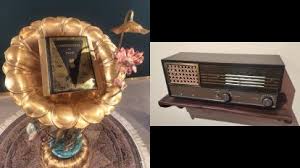
- 26 Nov 2024
In News:
Lok Sabha Speaker Om Birla and Union law minister Arjun Ram Meghwal inaugurated the country's first Constitution Museum at OP Jindal Global University in Sonipat.
Museum Features
- Centrepiece: A photolithographic copy of the Indian Constitution (one of 1,000 reproductions).
- 360-Degree Experience: A visual presentation that takes visitors through pre-Independence India.
- Multimedia Presentation: Chronologically details significant events leading to the drafting of the Constitution.
- Constituent Assembly Members:
- Nearly 300 sculptured busts of members who contributed to the making of the Constitution.
- Hologram of Dr. BR Ambedkar: Located in the mezzanine section, showcasing his philosophies through interactive displays.
- Art Installations:
- ‘We, The People of India’ by Rajesh P Subramanian: Represents unity in diversity.
- ‘Echoes of Liberty’ by Rahul Gautam: Combines constitutional manuscripts with contemporary design.
- ‘Triad of Unity’ by Harsha Durugadda: Symbolizes unity, justice, and sovereignty.
- ‘Insaaf Ki Devi’ by Nishant S Kumbhatil: Depicts Lady Justice, representing judicial impartiality.
- ‘Equality Before Law’ by Pradeep B Jogdand: Illustrates equality and justice principles.
- ‘Map’ by Deval Verma: Encourages visitors to reflect on value and beauty.
- ‘Freedom’ by KR Nariman: Pays tribute to the people who uphold constitutional values.
- ‘Founding Mothers’ by Rahul Gautam: Honors the 15 women members of the Constituent Assembly.
One Nation One Subscription (ONOS)

- 26 Nov 2024
In News:
Cabinet approves One Nation One Subscription (ONOS) Scheme.
Key Highlights:
- Objective: It is a new initiative to provide unified access to international scholarly research articles and journals for all government-managed higher education institutions and research institutions in India.
- Scheme Overview:ONOS aims to make nearly 13,000 scholarly journals accessible to over 1.8 crore students, faculty, researchers, and scientists in more than 6,300 institutions across India. These journals will cover all academic disciplines, promoting both core and interdisciplinary research, including in tier 2 and tier 3 cities.
- Digital Platform:The scheme will be implemented through a fully digital process, coordinated by the Information and Library Network (INFLIBNET), an autonomous center under the University Grants Commission (UGC). The platform will provide easy access to the journals and facilitate a streamlined subscription process.
- Investment and Coverage:A total of ?6,000 crore has been allocated for ONOS for three years (2025-2027). The scheme will cover major international publishers such as Elsevier, Springer, Wiley, and Oxford University Press. It will enable institutions to access 13,000 journals from 30 global publishers.
Benefits of the Scheme:
- Access to Top-Quality Research:ONOS will provide wide access to top-tier scholarly journals, benefiting institutions, researchers, and students across various fields. It will significantly improve the research environment in the country, especially for institutions that previously lacked the resources to access high-impact journals.
- Fostering Research and Development:The initiative aligns with India's vision of becoming an Atmanirbhar and Viksit Bharat by 2047, supporting the government's goals under the National Education Policy (NEP) 2020 and the Anusandhan National Research Foundation (ANRF). It will help foster a culture of research and innovation in Indian institutions.
- Inclusivity:The scheme will particularly benefit institutions in smaller towns and rural areas, helping bridge the knowledge gap between urban and rural academic institutions.
- Simplified Access:The scheme eliminates the need for separate subscriptions to individual journals by different institutions, streamlining access to high-quality content through a single platform.
Implementation Details:
- Platform and Process:The ONOS platform will allow institutions to access journals through a unified portal, providing easy and coordinated access. The Department of Higher Education (DHE)will be responsible for conducting awareness campaigns about the initiative, ensuring widespread utilization among students and faculty.
- Review Mechanism:The ANRF will monitor and periodically review the usage of ONOS and track the contributions of Indian authors in the journals, ensuring that the initiative continues to support India’s research landscape.
- Operational Date:The ONOS platform is set to become operational on January 1, 2025, providing comprehensive access to research materials for government-managed higher education and research institutions.
The One Nation One Subscription scheme is a major step towards enhancing India's position in the global research ecosystem. It will provide unparalleled access to scholarly resources, supporting research excellence and innovation across the country.
Proba-3 mission
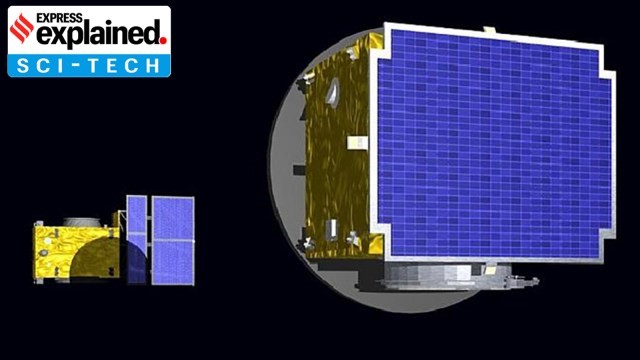
- 26 Nov 2024
In News:
The Indian Space Research Organisation (ISRO) will launch the European Space Agency’s Proba-3 mission on its PSLV rocket to study the solar corona, the outermost and hottest part of the Sun’s atmosphere, from Sriharikota on December 4.
Key Highlights:
- Mission Objective:The mission will study the Sun’s outermost and hottest atmosphere, the solar corona. The mission will also demonstrate the first-ever precision formation flying with two satellites working in tandem.
- Satellite Formation:Proba-3 consists of two satellites that will fly together, maintaining a fixed formation to study the Sun's corona.
What is Proba-3?
- Proba-3 is a solar mission developed by ESA, with an estimated cost of 200 million euros. The mission involves launching two satellites that will separate after launch, but fly in precise formation. The satellites will create a solar coronagraph, which blocks the Sun’s bright light to observe the solar corona, the Sun’s outermost atmosphere.
- Orbit: Proba-3 will orbit in a highly elliptical path (600 x 60,530 km) with an orbital period of 19.7 hours.
- Mission Duration: The expected mission life is two years.
What will Proba-3 Study?
The Sun's corona is extremely hot (up to 2 million degrees Fahrenheit), making it difficult to observe with conventional instruments. However, studying the corona is essential because it generates space weather phenomena such as solar storms and solar winds, which can impact satellite communications, navigation systems, and power grids on Earth.
Proba-3 will use three main instruments for its mission:
- ASPIICS (Association of Spacecraft for Polarimetric and Imaging Investigation of the Corona of the Sun):This coronagraph will observe the Sun’s outer and inner corona, similar to how the corona is visible during a solar eclipse. It features a 1.4-meter occulting disk to block the Sun’s light and facilitate close-up observations.
- DARA (Digital Absolute Radiometer):This instrument will measure the Sun’s total energy output (total solar irradiance).
- 3DEES (3D Energetic Electron Spectrometer):It will study electron fluxes as they pass through Earth's radiation belts, providing valuable data on space weather.
Why is Proba-3 Unique?
- Proba-3 is designed to mimic a natural solar eclipse, allowing continuous study of the Sun’s corona. Typically, solar scientists observe the corona for only about 10 minutes during an eclipse, occurring around 1.5 times a year. Proba-3 will provide up to six hours of data per day, equivalent to 50 eclipse events annually.
- The two satellites will maintain a precise formation, with one acting as an occulting spacecraft to cast a shadow, while the other (the coronagraph) stays in the shadow and observes the Sun’s corona. They will be positioned 150 meters apart, maintaining their formation autonomously.
- This artificial eclipse will enable scientists to study the corona and its less-understood features more effectively.
National Gopal Ratna Award 2024
- 26 Nov 2024
In News:
The Department of Animal Husbandry and Dairying (DAHD) declared the winners of the National Gopal Ratna Awards(NGRA); one of the highest National Awards in the field of livestock and dairy sector for the year 2024.
About the National Gopal Ratna Awards (NGRA):
- Purpose:Recognize and encourage individuals, AI technicians, dairy cooperatives, and farmer organizations in the livestock and dairy sector.
- Categories:
- Best Dairy Farmer (Indigenous Cattle/Buffalo Breeds)
- Best Artificial Insemination Technician (AIT)
- Best Dairy Cooperative/Milk Producer Company (MPC)/Dairy Farmer Producer Organization
- Addition (2024):Special awards for North Eastern Region (NER) to promote dairy development in the area, with winners in all three categories.
- and Prizes:
- Rs. 5 lakhs for 1st rank, Rs. 3 lakhs for 2nd rank, Rs. 2 lakhs for 3rd rank, and Rs. 2 lakhs for Special NER Award in the categories of Best Dairy Farmer and Best Dairy Cooperative/FPO/MPCs.
- For Best AIT, winners will receive a Certificate of Merit and a memento.
- Process:Winners selected from 2,574 applications via an online portal (https://awards.gov.in).
- The livestock sector is crucial for India's economy, contributing significantly to agriculture and providing livelihood, especially for small and marginal farmers, women, and landless laborers.
- Indigenous breeds have immense genetic potential, but their population and performance have been declining. To address this, the Rashtriya Gokul Mission was launched under the National Programme for Bovine Breeding and Dairy Development in 2014 to conserve and develop indigenous bovine breeds.
National Milk Day
- It is celebrated annually on November 26 in India to honor the significant contributions of milk and the dairy industry to the country's development.
- The day commemorates the birth anniversary of Dr VergheseKurien, the "Father of the White Revolution" in India, who played a pivotal role in transforming India into the largest producer of milk globally.
- National Milk Day was first celebrated on November 26, 2014, after the Indian Dairy Association (IDA), along with various dairy institutions across the country.
Nayi Chetna 3.0 – PahalBadlaav Ki

- 26 Nov 2024
In News:
Union Minister Shri Shivraj Singh Chouhan launches the third edition of ‘Nayi Chetna – PahalBadlaav Ki’ a month-long national campaign against gender-based violence in New Delhi.
Key Highlights:
- Organized by: Deendayal Antyodaya Yojana – National Rural Livelihoods Mission (DAY-NRLM) under the Ministry of Rural Development.
- Led by: DAY-NRLM’s extensive Self-Help Group (SHG) network.
- Aim of the Campaign: Raise awareness and encourage grassroots-level action to combat gender-based violence.
- Campaign Slogan: “EkSaath, EkAwaaz, HinsaKeKhilaaf” (United Voice Against Violence).
- Approach:
- Adopts a "whole-of-government" approach with collaboration from 9 key ministries:
-
- Ministry of Women and Child Development
- Ministry of Health and Family Welfare
- Department of School Education and Literacy
- Ministry of Home Affairs
- Ministry of Panchayati Raj
- Ministry of Social Justice and Empowerment
- Ministry of Youth Affairs and Sports
- Ministry of Information and Broadcasting
- Department of Justice
- Key Objectives:
- Raise awareness about all forms of gender-based violence.
- Mobilize communities to demand accountability and action.
- Facilitate access to timely intervention and support systems.
- Empower local institutions to take action against violence.
- Goals for Nayi Chetna 3.0:
- Generate widespread awareness about gender-based violence.
- Foster collective action at the grassroots level.
- Drive convergence among government ministries and community stakeholders.
- Create a sustainable and informed movement for gender equality and women’s empowerment.
Narasapur Crochet Lace Craft
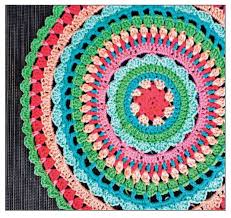
- 25 Nov 2024
In News:
The Narasapur crochet lace craft, which has been a significant part of the cultural and economic fabric of the Godavari region in Andhra Pradesh, has recently been granted the prestigious Geographical Indication (GI) tag. The GI tag, registered by the Department of Promotion of Industry and Internal Trade (DPIIT) on March 1, 2024, acknowledges that this unique craft is geographically linked to the West Godavari and Dr. B.R. Ambedkar Konaseema districts in the Godavari region.
Key Details:
- Historical Background:
- The origins of the Narasapur crochet lace craft date back to 1844, when Macrae and his wife from Scotland introduced the lace-making technique to local women while they were associated with a Christian missionary in Dummugudem (now in Telangana).
- Over time, the craft became a crucial part of the region’s heritage and survived significant historical events like the Indian famine of 1899 and the Great Depression of 1929.
- Craftsmanship:
- The crochet lace is produced using thin threads and delicate crochet needles of varying sizes, resulting in intricate designs.
- The products made include doilies, pillow covers, cushion covers, bedspreads, table runners, and tablecloths, among others. These items are often exported to international markets like the US, UK, and France.
- Economic and Social Impact:
- The craft is predominantly carried out by women artisans, with over 15,000 women involved in its production. The GI tag is expected to revitalize the industry, especially after its stagnation due to the COVID-19 pandemic and competition from machine-made lace from China.
- The craft is also an important part of the Alankriti Lace Manufacturing Mahila Mutual Aided Co-operative Societies’ Federation Limited, which supports local women artisans and has revived operations at the Alankriti Lace Park in Narasapur.
- GI Tag Benefits:
- The Geographical Indication tag serves to protect the authenticity of the lace products, boost demand, and ensure better market recognition.
- It provides legal protection to the traditional craft, preventing unauthorized use of the term "Narasapur lace" by others and promoting the region's cultural heritage and economic growth.
- Future Outlook:
- With the GI tag, there is hope for increased demand for Narasapur lace products both in domestic and global markets, thus offering a fresh avenue for artisans to revive and sustain the craft.
- Alankriti Federation and other stakeholders are optimistic that the GI tag will significantly revitalize the local economy and empower women in the region.
Palparescontrarius
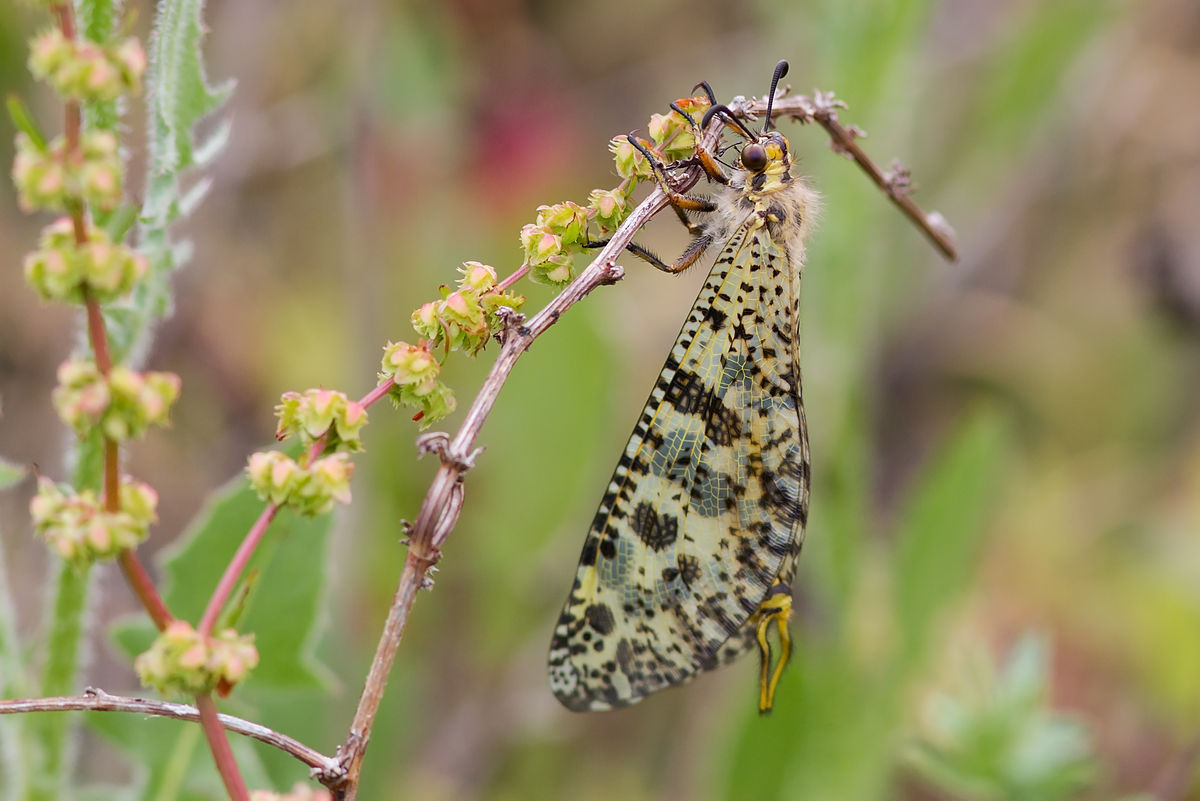
- 25 Nov 2024
In News:
Palparescontrarius is a species of antlion that was recently spotted for the first time in Tamil Nadu, on the Madras Christian College (MCC) campus. It is notable for being a large-sized adult antlion that resembles a dragonfly but has distinct characteristics that separate it from dragonflies, such as its clubbed antennae and fluttering flight.
Key Features of Palparescontrarius:
- Appearance:
- The adult Palparescontrarius is large and resembles a dragonfly in its general body structure.
- It has lacy wings, long clubbed antennae, and a slender, grayish body.
- Its wings are typically clear, although some species of antlions have spots on their wings.
- Flight and Behavior:
- Unlike dragonflies, Palparescontrarius has a distinct fluttering flight.
- It is a weak flier and can often be spotted at night near illuminated spots.
- Habitat and Lifestyle:
- Like other antlions, Palparescontrarius is found in dry, sandy regions and is mostly active at night.
- The larvae of this species are particularly known for their predatory behavior, as they trap ants and other small insects in cone-shaped pits they dig into the sand.
- Ecological Importance:
- Antlions, including Palparescontrarius, are harmless to humans and beneficial to the environment because they feed on ants and other insects, thus helping to control pest populations.
Breakthrough in Bacterial Computing
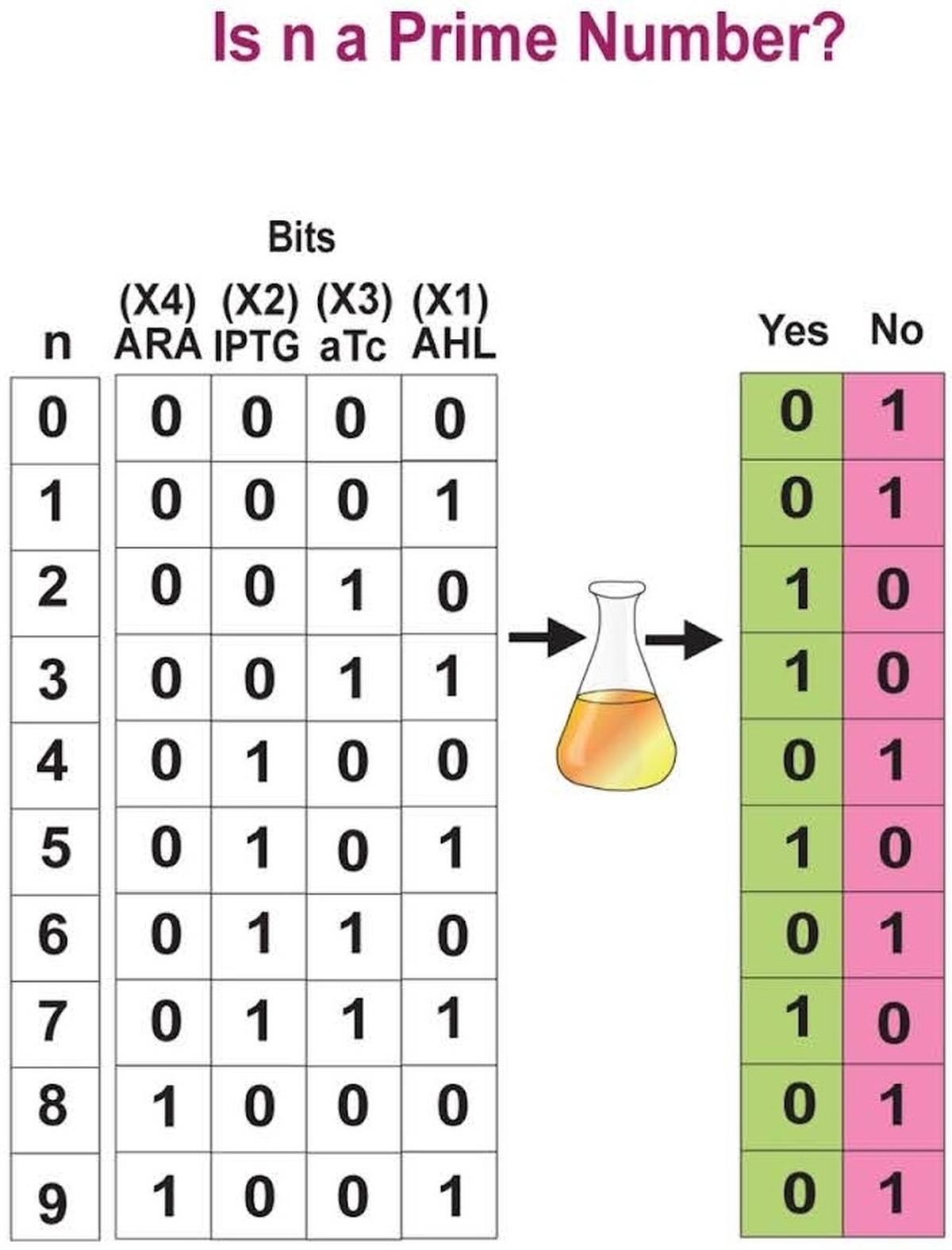
- 25 Nov 2024
In News:
Scientists at the Saha Institute of Nuclear Physics in Kolkatahave successfully engineered bacteria capable of solving mathematical problems, marking a major step forward in the field of synthetic biology and biocomputing. These engineered bacteria can function like artificial neural networks, performing tasks that were traditionally reserved for humans or conventional computers.
Key Highlights:
- Bacterial Computers:
- The research team introduced genetic circuits into bacteria, turning them into computational units capable of tasks like determining whether a number is prime or identifying vowels in an alphabet.
- These bacterial "computers" mimic artificial neural networks (ANNs), where each type of engineered bacterium (called a "bactoneuron") behaves like a node in a network, processing inputs to generate outputs.
- How it Works:
- The bacteria's genetic circuits are activated by chemical inducers, which represent binary 0s and 1s (the fundamental language of computing). The presence or absence of certain chemicals determines whether a bacterium expresses a specific fluorescent protein, representing the binary states.
- For example, when asked if a number between 0-9 is prime, the bacteria can express green fluorescent proteins (1) for "yes" or red fluorescent proteins (0) for "no", providing binary outputs that solve the problem.
- Complex Tasks:
- The team advanced to more complex tasks, such as asking the bacterial computers whether adding a number (like 2 + 3) results in a prime number or if a number's square can be expressed as the sum of factorials.
- In an even more complex test, the bacteria solved an optimization problem—calculating the maximum number of pieces a pie could be cut into with a given number of straight cuts. The bacteria’s fluorescent output represented binary numbers that were converted to decimal for the correct solution.
- Technical Details:
- The researchers used Escherichia coli (E. coli) bacteria, engineered with transcriptional genetic circuits, which recognize specific DNA sequences and trigger the expression of proteins based on the presence of chemical inducers.
- The system is similar to how ANNs work in traditional computing, where nodes (bactoneurons) take inputs, apply weights, and produce outputs based on activation functions.
- Implications and Future Prospects:
- Synthetic Biology & Biomanufacturing: This breakthrough could revolutionize industries such as pharmaceuticals and biomanufacturing by enabling biocomputers that perform specific tasks in a biological environment, potentially reducing reliance on silicon-based computers.
- Medical Applications: The ability of engineered bacteria to process data could lead to biocomputers capable of diagnosing diseases (such as cancer) at an early stage and even administering localized treatments.
- Understanding Intelligence: Bagh and his team hope to explore the biochemical nature of intelligence, pondering how intelligence could emerge from simple, single-celled organisms.
- Groundbreaking Research:
- The research, published in Nature Chemical Biology, has drawn significant attention in the synthetic biology community. Centre for Synthetic Biology highlighting the potential of bacteria programmed to solve complex problems.
This innovative work paves the way for future developments in biocomputing, where living organisms, instead of silicon chips, could be used to perform sophisticated calculations, offering new ways to think about computing, intelligence, and even the future of technology in medicine.
6th ASEAN-India Trade in Goods Agreement (AITIGA) Joint Committee Meeting
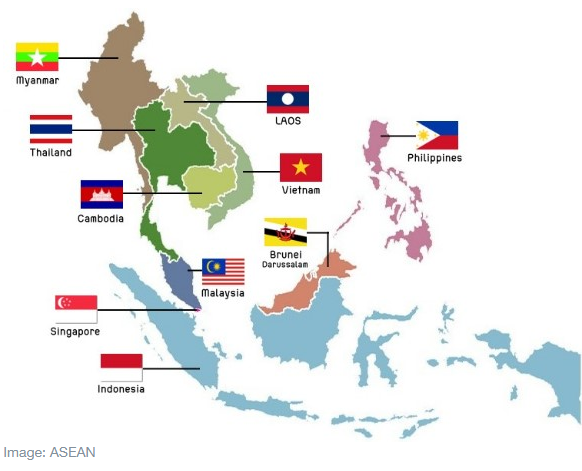
- 25 Nov 2024
In News:
The 6th ASEAN-India Trade in Goods Agreement (AITIGA) Joint Committee and related meetings for discussions on the review of the AITIGA were held recently in Vanijya Bhawan, New Delhi.
Key Highlights:
Key Negotiation Areas
- 8 Sub-Committees under the AITIGA Joint Committee discussed:
- Market access, rules of origin, SPS measures, standards and technical regulations.
- Customs procedures, economic and technical cooperation, trade remedies, and legal and institutional provisions.
- 5 Sub-Committees met physically during this round of negotiations.
Progress in Discussions
- Textual Discussions: Sub-Committees made progress in discussions on various provisions.
- Tariff Negotiations: Initial steps towards initiating tariff negotiations were covered.
High-Level Meetings Leading to AITIGA Review
- 21st ASEAN-India Economic Ministers Meeting: Held in September 2024 in Vientiane, Laos.
- 21st ASEAN-India Summit: Held in October 2024 in Vientiane, Laos.
Both meetings urged the Joint Committee to expedite negotiations and aim for the conclusion of the review in 2025.
Bilateral Meetings
- ASEAN delegates held separate bilateral meetings with Thailand and Indonesia to discuss bilateral trade issues.
- Indian and ASEAN Chief Negotiators met to align on the ongoing issues and future steps.
India's Review Demands
- Request for Review: India sought a review of AITIGA (implemented in 2010), citing disproportionate trade benefits favoring ASEAN countries.
- India’s Objectives:
- Enhanced Market Access: India pushed for ASEAN countries, especially Vietnam, to commit to greater market-opening for Indian goods.
- Stricter Rules of Origin (ROO): India requested more stringent ROO provisions to prevent Chinese goods from entering India via ASEAN countries at preferential rates.
Trade Relationship and Economic Impact
- Bilateral Trade:
- Total trade with ASEAN reached USD 121 billion in FY 2023-24.
- Trade during April-October 2024 was USD 73 billion, marking a 5.2% growth.
- Trade Deficit: India’s trade deficit with ASEAN widened from USD 4.98 billion in FY 2010-11 to USD 38.4 billion in 2023-24.
- ASEAN accounts for 11% of India’s global trade.
Future Outlook
- The next meeting of the AITIGA Joint Committee is scheduled for February 2025 in Jakarta, Indonesia.
- The review process aims to further enhance sustainable trade between India and ASEAN countries.
Access to Medicine Index Report 2024
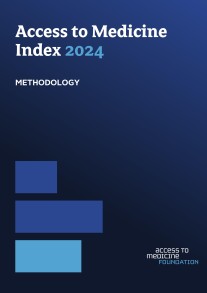
- 25 Nov 2024
In News:
- Recently, Access to Medicine Index Report 2024 was released by the Access to Medicine Foundation. The report evaluates 20 leading pharmaceutical companies on their efforts to expand access to medicines in low- and middle-income countries (LMICs).The biennial report has been published since 2008.
- Key Highlights:
- Key Areas of Evaluation
- Governance of Access: Companies’ leadership in addressing access issues.
- Research & Development (R&D): Focus on innovations for diseases prevalent in LMICs.
- Product Delivery: Efforts to ensure medicines and vaccines are accessible.
- Findings from the 2024 Report
- Gaps in Access for Low-Income Countries:
- Many pharmaceutical companies are adopting ‘inclusive business models,’ but outcomes are mixed, with transparent reporting still lacking.
- 61% of products lack specific access strategies for low-income countries.
- Exclusion from Clinical Trials:Only 43% of clinical trials take place in LMICs, despite these countries representing 80% of the global population.
- Limited Technology Transfers & Local Availability:
- Technology transfers and voluntary licensing are concentrated in countries like Brazil, China, and India.
- Sub-Saharan Africa (excluding South Africa) remains largely overlooked.
- Decline in R&D for Priority Diseases:
- Pharmaceutical companies are moving away from diseases like malaria, tuberculosis, and neglected tropical diseases, which disproportionately affect LMICs.
- Gaps in Access for Low-Income Countries:
- Key Issues in Accessing Medicines in LMICs
- Economic Barriers:
- High costs of essential medicines, including patented drugs, limit access for patients in LMICs with low purchasing power.
- Out-of-pocket expenditures lead to catastrophic financial consequences for families.
- Infrastructure Challenges:
- Poor transportation and cold chain infrastructure hamper the efficient distribution of medicines, especially in rural areas.
- Disruptions in supply chains (e.g., during pandemics) exacerbate medicine shortages.
- Regulatory Issues:Weak enforcement of regulatory frameworks results in the proliferation of substandard and counterfeit medicines, compromising treatment efficacy.
- Workforce Limitations:
- A shortage of trained healthcare professionals restricts appropriate prescription and management of medicines.
- Cultural beliefs and low health literacy further complicate adherence to treatments.
- Economic Barriers:
- Challenges Specific to LMICs
- Dual Burden of Diseases:
- LMICs face both infectious diseases and non-communicable diseases (NCDs), putting strain on fragile healthcare systems.
- 17 million people die from NCDs before age 70 annually, with 86% of these deaths occurring in LMICs.
- Need for Local Manufacturing:
- Strengthening local pharmaceutical manufacturing and distribution networks is crucial to ensure a reliable supply of essential medicines and reduce dependence on imports.
- Dual Burden of Diseases:
- Recommendations for Improving Access
- Companies should scale up efforts to bridge the health equity gap and use innovative approaches and local partnerships to improve access.
- Focus on increasing transparency in access reporting and addressing the lack of strategies for low-income countries.
- Pharmaceutical companies should refocus on diseases prevalent in LMICs, such as malaria and tuberculosis, and ensure that their R&D addresses the needs of these regions.
- Key Areas of Evaluation
Chagas Disease
- 24 Nov 2024
In News:
A recent study by Texas A&M University has uncovered a concerning new risk for dogs in Texas related to Chagas disease—the parasite Trypanosoma cruzi (T. cruzi), which causes the disease, can survive in dead kissing bugs (Triatominae). This discovery was published in the Journal of Medical Entomology in October 2024 and has raised alarms about how dead insects, which might be found in insecticide-treated dog kennels, could still pose a transmission risk for dogs.
Key Findings:
- Chagas Disease is primarily spread by kissing bugs, which carry T. cruzi in their gut. Dogs can contract the parasite by ingesting the bug's feces, especially when they lick their bite wounds.
- The study shows that even dead kissing bugs, which are often discarded in kennels, can still carry viable T. cruzi. This is particularly worrying in areas where insecticides are used to control the insects but dead bugs remain accessible to dogs.
- Researchers collected live and dead triatomines from six Texas kennels between June and October 2022, using both genetic testing and culture methods to assess whether the bugs were carrying live T. cruzi.
- 28% of the collected bugs tested positive for T. cruzi.
- A dead kissing bug (Paratriatomalecticularia) was found to still harbor live T. cruzi cultures, demonstrating that the parasite can survive even after the insect has died.
Transmission and Risks:
- Kissing bugs typically feed on the blood of animals like dogs, rodents, and raccoons, defecating near the bite site. If the dog licks the contaminated area, they can ingest the parasite-laden feces and become infected.
- The new discovery suggests that dead kissing bugs may pose a secondary transmission route for T. cruzi. Dogs that ingest these dead bugs, either in insecticide-treated areas or natural environments, could still contract the parasite.
- Researchers noted that dead bugs with intact gut contents showed a higher rate of infection than desiccated ones, which suggests that the condition of the bug after death impacts how long the parasite survives.
Implications for Management:
- The findings challenge current insecticide-based control methods. While insecticides kill the bugs, dead insects could still serve as a source of infection, necessitating new approaches for managing Chagas disease transmission in dog kennels.
- The study underscores the importance of regularly removing dead insects in kennels and reconsidering control strategies beyond just using insecticides.
About Chagas Disease:
- Chagas disease is caused by the Trypanosoma cruzi parasite, commonly found in the feces of kissing bugs. It can cause long-term heart and digestive issues if left untreated.
- The disease is common in parts of South America, Central America, and Mexico, but it has been increasingly reported in the southern United States.
- Treatment focuses on killing the parasite in the acute phase, but once it progresses to the chronic phase, treatment is aimed at managing symptoms.
Next Steps and Ongoing Research:
- The Texas A&M team plans to explore how long T. cruzi survives in dead triatomines and whether insecticides affect the parasite’s ability to persist. They are also looking into developing integrated pest management strategies for environments with high kissing bug activity.
- The study also forms part of a broader "One Health" approach, recognizing that both human and animal health are interconnected, and research on Chagas disease in animals can help inform public health strategies.
Imperial Eagle(Aquila heliaca)
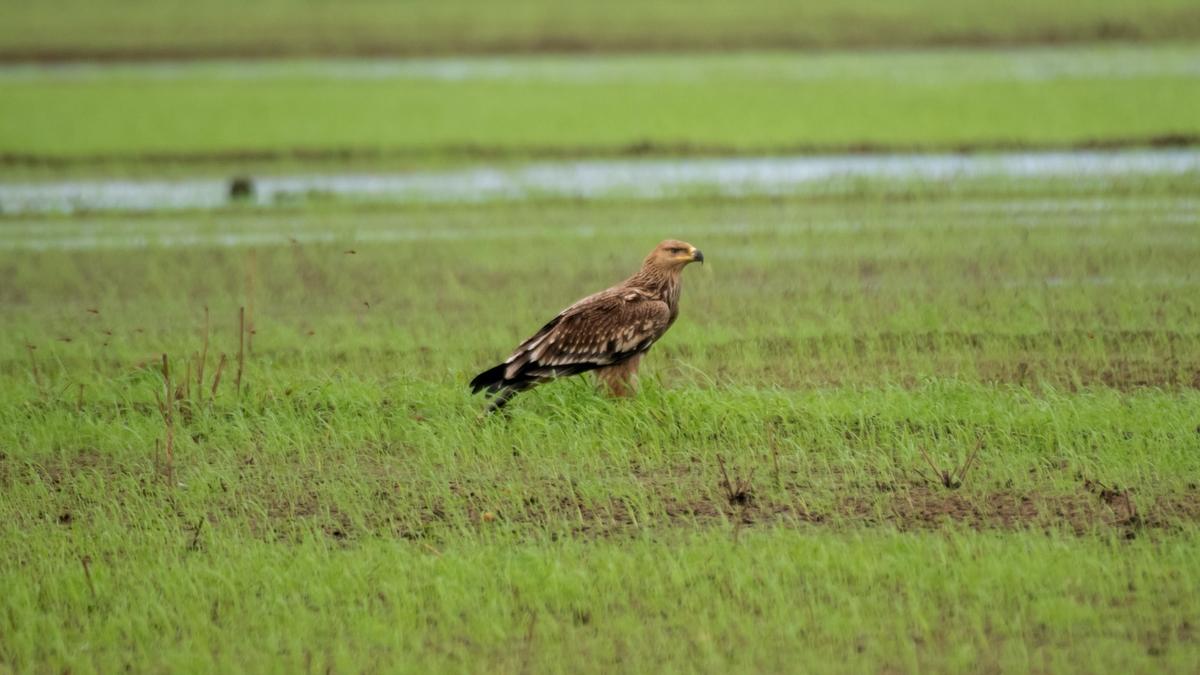
- 24 Nov 2024
In News:
- A rare Imperial Eagle (Aquila heliaca) was spotted in the PulluzhiKole wetlands. This marks a significant event as the species was last reported in Kannur in 2003.
Key Highlights:
- Habitat and Migration:
- The Imperial Eagle primarily breeds in southeastern Europe, west, and central Asia.
- During the winter months, it migrates to regions including northeastern Africa, West Asia, and parts of Southeast Asia.
- Conservation Status:The IUCN Red List lists the Imperial Eagle as a vulnerable species, indicating its potential risk of extinction, underscoring the need for its conservation efforts.
- Importance of Conservation:
- The Kole fields are a Ramsar-protected area, emphasizing their critical role in preserving migratory bird habitats.
- Ongoing conservation and observation efforts in these wetlands are essential for protecting the diverse bird species that use the area.
Features of the Imperial Eagle:
- Scientific Name: Aquila heliaca
- Physical Characteristics:
- Size: Length ranges from 68 to 90 cm, with a wingspan between 1.76 to 2.2 meters.
- Color: It has a pale golden crown and nape, with a grey base extending to the tail. Its wings feature prominent white "braces" on the scapulars.
- Sexual Dimorphism: Males are typically smaller than females.
- Habitat: Prefers old forests, mountainous regions, and riverside forests.
- Feeding: It has strong legs and curved talons for capturing and killing prey, and exceptional eyesight to spot prey from high altitudes.
- Conservation Efforts: Continued monitoring and protection of the Kole wetlands and other vital habitats are crucial for the survival of this vulnerable species and other at-risk birds.
Chinar Boat Race 2024

- 24 Nov 2024
In News:
- The Chinar Boat Race 2024 was successfully organized in Dal Lake, Srinagar, Jammu and Kashmir.
Key Highlights:
- Organizers:The event was hosted by the Indian Army in collaboration with White Globe NGO and the Lake Conservation and Management Authority (LCMA).
- Purpose:The race aimed to celebrate Kashmir’s culture and traditions while promoting conservation of Dal Lake.The event emphasized the ecological importance of Dal Lake and the need for its protection.
- Cultural Impact:The race attracted a large crowd of both locals and tourists, highlighting the vibrant culture of Kashmir.The event fostered a sense of community and unity, with people cheering for the participants.
- Military Engagement:The Army organizes sports and cultural events in the region to strengthen Army-public relationships, engage local youth, and promote an honourable profession in the military.
Dal Lake Overview:
- Location: Situated in Srinagar, Jammu and Kashmir, surrounded by the PirPanjal mountains.
- Area: 18 sq. km (lake); part of a 21.1 sq. km wetland.
- Islands: Includes 3 islands, two marked by Chinar trees: Roph Lank (Silver Island) and Sone Lank (Gold Island).
- Significance: Known as the “Jewel in the crown of Kashmir” or “Srinagar’s Jewel”.
- Floating Market: Famous for its floating market where vendors use wooden boats (Shikaras) to sell goods.
- Temperature: Can drop to −11°C in winter, sometimes freezing the lake.
Minke Whale
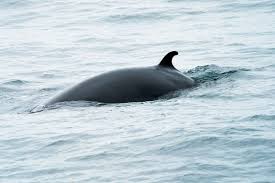
- 24 Nov 2024
In News:
Scientists have directly measured the hearing range of minke whales for the first time, finding that they can detect high-frequency sounds up to 90 kHz.
Key Highlights:
- Implication for Ocean Noise: The study suggests that baleen whales, including minke whales, may be more affected by anthropogenic ocean noise (e.g., naval sonar) than previously recognized, as their hearing range had been underestimated.
- Research Method: A novel catch-and-release technique was used to temporarily hold adolescent minke whales in Norway for auditory evoked potential (AEP) tests to measure their hearing sensitivity.
- Findings: Contrary to the belief that baleen whales are low-frequency specialists, minke whales can detect frequencies between 45 kHz to 90 kHz.
- Impact of Findings: The results could affect future regulations on ocean noise and its impact on marine mammals, as better hearing data is now available for baleen whales.
Minke Whale Overview:
- Family: Minke whales are members of the baleen or "great" whale family and are the smallest of the rorquals.
- Species: There are two recognized species:
- Common minke whale (Balaenoptera acutorostrata), found in various ocean basins.
- Antarctic minke whale (B. bonaerensis), found in the Southern Hemisphere.
- Subspecies:
- Dwarf minke whale: An unnamed subspecies of the common minke whale, mostly in the Southern Hemisphere.
- North Atlantic (B. a. acutorostrata) and North Pacific (B. a. scammoni) subspecies of common minke whales.
- Distribution: Minke whales are widely spread across tropical, temperate, and polar regions (65°S to 80°N), with common minke whales in all ocean basins and dwarf minke whales mostly in the Southern Hemisphere.
- Feeding Areas: They feed in cooler waters at higher latitudes and can be found both inshore and offshore.
- Conservation Status (IUCN):
- Common minke whale: Least Concern.
- Antarctic minke whale: Data Deficient.
Project Veer Gatha

- 24 Nov 2024
In News:
Over 1.76 crore school students from all 36 States and UTs participated in Project Veer Gatha 4.0.
Key Highlights:
- Activities: Students submitted poems, paintings, essays, videos, and other creative works in honor of the bravery and sacrifice of Armed Forces personnel.
- Objective: Instituted in 2021, the project aims to spread the inspiring stories of Gallantry Awardees to foster patriotism among students.
- Platform for Creativity: Students engage in creative projects based on the heroic deeds and sacrifices of Gallantry Award winners.
- Previous Editions:
- Edition 1 (2021): 8 lakh students.
- Edition 2 (2022): 19.5 lakh students.
- Edition 3 (2023): 1.36 crore students.
- School-Level Activities: Schools conducted various activities from 16.09.2024 to 31.10.2024, uploading 4 best entries per school to the MyGov portal.
- Awareness Programs: The Ministry of Defence organized virtual and face-to-face awareness sessions across schools.
- Winner Recognition:
- Past Editions: 25 winners in Editions I and II, and 100 winners in Edition 3.
- Project 4.0: 100 National winners, each receiving Rs. 10,000.
- District & State/UT Winners: 4 District-level and 8 State/UT-level winners will be felicitated by respective authorities.
- Collaborative Initiative: The project is a joint effort of the Ministry of Defence and Ministry of Education.
11th ASEAN Defence Ministers’ Meeting-Plus (ADMM-Plus)
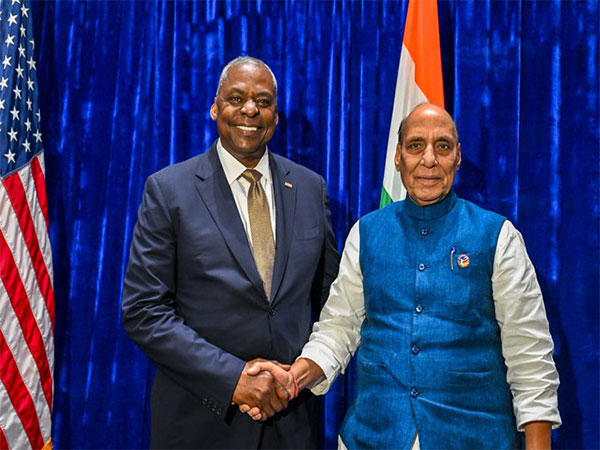
- 23 Nov 2024
In News:
The 11th ADMM-Plus held in Vientiane, Laos saw Union Defence Minister Rajnath Singh engage in discussions with his counterparts from the United States, Japan, and the Philippines.
Focus: The talks centered on strengthening defence partnerships, regional security, and enhancing cooperation among Indo-Pacific nations.
ASEAN Defence Ministers’ Meeting-Plus (ADMM-Plus):
- Platform for Dialogue: The ADMM-Plus is a key platform for ASEAN and its eight Dialogue Partners—Australia, China, India, Japan, New Zealand, Republic of Korea, Russia, and the United States.
- Establishment: The inaugural ADMM-Plus was held in HàN?i, Vietnam on 12 October 2010.
- Annual Meetings: Since 2017, the ADMM-Plus has met annually to enhance dialogue and cooperation amidst an increasingly complex regional security environment.
Objectives:
- Capacity Building: To aid ASEAN members in addressing shared security challenges.
- Promote Trust and Transparency: Enhance mutual trust and confidence between ASEAN and partner nations.
- Regional Peace and Stability: Focus on cooperation in defence and security to counter transnational security challenges.
- ASEAN Security Community: Contribute to realizing the ASEAN Security Community, as per the Bali Concord II, aiming for peace, stability, democracy, and prosperity in the region.
- Vientiane Action Programme: Facilitate ASEAN's efforts towards a peaceful, secure, and prosperous ASEAN with outward-looking relations with Dialogue Partners.
Cicada
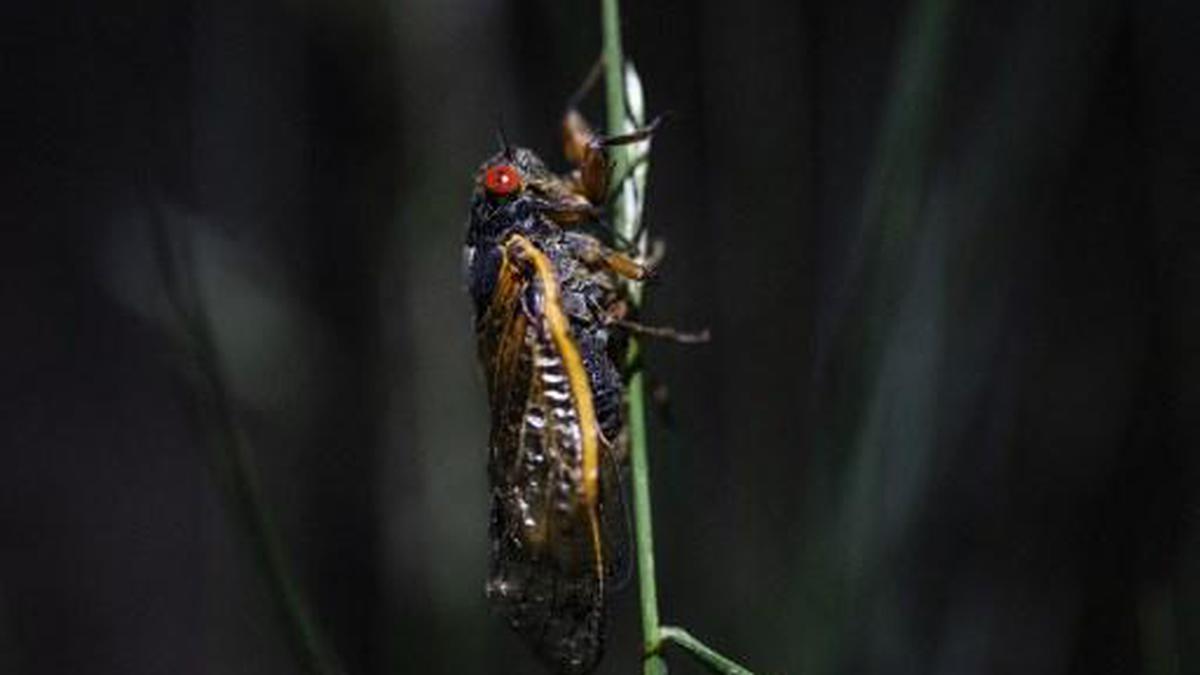
- 23 Nov 2024
In News:
North American cicadas have life cycles that last for prime numbers of years, putting pressure on the idea that humans created mathematics.
What are Cicadas?
- Classification: Cicadas are insects that belong to the order Hemiptera and the superfamily Cicadoidea.
- Physical Features: Hemipteran insects (also known as true bugs) have piercing-sucking mouthparts and two pairs of wings.
- Life Span: Cicadas spend the majority of their life underground, feeding on plant sap. Once they emerge from the soil, they have a short adult life span of about 2 to 4 weeks.
Habitat:
- Preferred Environment: Cicadas are typically found in natural forests with large trees and are considered canopy dwellers.
- Global Distribution: Cicadas are found on every continent except Antarctica. The highest genetic diversity of cicadas is found in India and Bangladesh, followed by China.
Cicada Emergence and Life Cycle:
- Life Cycle: Cicadas have a complex life cycle, involving long periods of underground development followed by brief adult emergence.
- Periodical Cicadas: There are species of cicadas that emerge in 13-year and 17-year cycles.
- Broods: Initially, 30 broods were categorized based on geography and emergence times, but currently, only about 15 broods remain active due to some broods becoming extinct.
- Unique Phenomenon: In April 2024, a rare event is expected where a trillion cicadas from two different broods will emerge simultaneously in the Midwest and Southeast regions of the United States.
Cicada's underground Development:
- Feeding on Sap: During their underground phase, cicadas feed on the sap of plants.
- Purpose of Long Development: Researchers believe the long development period helps cicadas evade above-ground predators by keeping them hidden in the soil.
Vulnerability after Emergence:
- Emergence Behavior: Once cicadas emerge, they construct a "cicada hut" to shed their nymphal skins, then climb onto nearby trees or vegetation.
- Predator Vulnerability: Adult cicadas are vulnerable to predators such as turtles and other forest creatures because they are clumsy and defenseless, making them easy prey for predators.
Significance of the 2024 Emergence:
- The coinciding emergence of cicadas from different broods (13-year and 17-year cycles) is a rare event that highlights the complexity and mathematical precision behind the cicada life cycle.
The science of plant communication
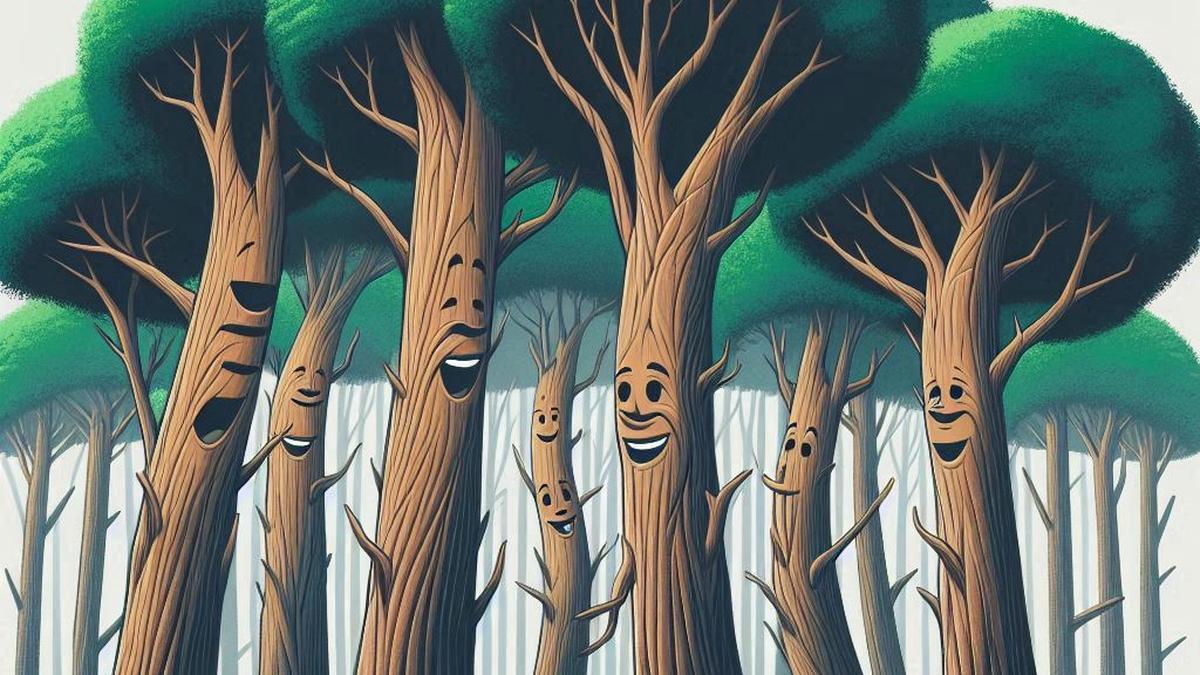
- 23 Nov 2024
In News:
More than any organism, plants understand the significance of communication the best.
Communication Through Chemical Warning (Volatile Organic Compounds - VOCs):
- Plants release volatile organic compounds (VOCs) when threatened, such as during herbivore grazing.
- VOCs act as distress signals, alerting neighboring plants to potential dangers.
- Neighboring plants respond by producing defensive compounds or toxins to deter herbivores.
- VOCs can travel through air and soil, enabling distant plants to prepare for threats, thereby enhancing survival across larger areas.
Wood Wide Web (Symbiotic Relationship with Mycorrhizal Fungi):
- Plants form a network with mycorrhizal fungi, connecting their roots in a symbiotic bond.
- This "Wood Wide Web" allows plants to communicate by sending chemical signals through their roots when under stress (e.g., pest attacks or drought).
- Fungi extend the root system and help share nutrients between plants, especially in times of distress.
- The network facilitates collective resilience and survival by ensuring nutrient sharing among plants.
Cooperative Behavior: Sharing Resources for Survival:
- Plants in close proximity, especially in dense forests, often share resources like water, nutrients, and light.
- When a plant detects a neighboring plant in distress, it prioritizes resource allocation to support its growth.
- This cooperative behavior promotes ecosystem stability and the overall health of forests.
- The mutual support system shows how cooperation enhances the survival of individual plants and the broader ecosystem.
Significance of Plant Communication in Ecosystem Health:
- Plants communicate through chemical signals, underground fungal networks, and cooperative behaviors.
- These interactions foster resilience, ensuring the survival of both individual plants and entire ecosystems.
- The silent communication among plants contributes to a dynamic, cooperative environment that thrives on mutual support.
GQ-RCP Platform
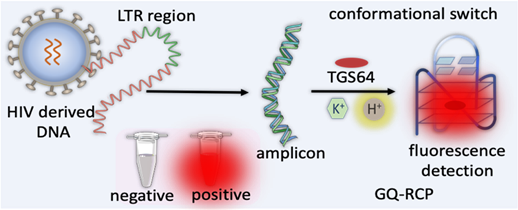
- 23 Nov 2024
In News:
Researchers have developed a technology for targeted better detection of HIV-genome derived G-Quadruplex (GQ).
Key Features of the GQ-RCP Platform
- Technology: GQ Topology-Targeted Reliable Conformational Polymorphism (GQ-RCP) platform developed by Jawaharlal Nehru Centre for Advanced Scientific Research (JNCASR).
- Detection Mechanism: Uses a fluorometric test to detect HIV-derived GQ DNA through reverse transcription and amplification.
- Advantage: Increases diagnostic reliability by reducing false positives associated with non-specific DNA probes.
- Process: pH-mediated transition of double-stranded DNA into GQ conformation for targeted detection.
- Flexibility: Initially designed for SARS-CoV-2, now adapted for HIV diagnosis.
About HIV
- Human Immunodeficiency Virus (HIV) attacks the immune system, specifically CD4 cells, weakening the body's ability to fight infections.
- Transmission: Spread through bodily fluids such as blood, semen, vaginal fluids, and breast milk.
- AIDS: Without treatment, HIV progresses to Acquired Immunodeficiency Syndrome (AIDS), where the immune system becomes severely damaged.
- Management: No cure; managed with antiretroviral therapy (ART), which controls viral replication.
Current HIV Situation in India
- Prevalence: As of 2021, ~2.4 million people living with HIV in India, with a 0.22% adult prevalence rate.
- Demographic Distribution: High prevalence among female sex workers (2.61%) and injecting drug users (5.91%). Women represent 39% of HIV-positive population.
- High-Prevalence States: Northeastern states have the highest prevalence (e.g., Mizoram - 2.70%) and southern states (e.g., Andhra Pradesh - 0.67%).
Government Initiatives on HIV
- National AIDS Control Program (NACP): Launched in 1992, aims for prevention, treatment, and care.
- Phase I (1992-1999): Focus on awareness, blood safety, and surveillance.
- Phase II (1999-2006): Expanded interventions for high-risk populations.
- Phase III (2007-2012): Increased targeted interventions and civil society involvement.
- Phase IV (2012-2021): Focused on integration of HIV services into public health systems.
- Phase V (2021-2026): Aim to reduce new infections and AIDS-related deaths by 80% by 2026.
- Legislative Framework: The HIV/AIDS Prevention and Control Act (2017) ensures the rights of people living with HIV and access to treatment without discrimination.
- International Support: India receives support from UNAIDS, WHO, the World Bank, and foundations like Bill & Melinda Gates Foundation.
Global Soil Conference 2024
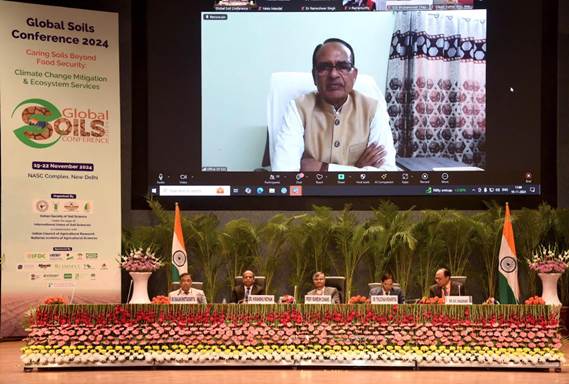
- 23 Nov 2024
In News:
- Global Soil Conference (GSC) 2024 held in New Delhi.
- Focused on soil health's importance for food security, climate change mitigation, and ecosystem services.
What is the Global Soil Conference 2024?
- Organizers: Indian Society of Soil Science (ISSS) in collaboration with the International Union of Soil Sciences (IUSS).
- Objective: Address sustainable soil/resource management challenges and foster global dialogue.
- Theme: "Caring Soils Beyond Food Security: Climate Change Mitigation & Ecosystem Services."
Key Highlights of GSC 2024:
- Soil Health Issues:
- Soil degradation threatens productivity and global food security.
- 30% of India's soil is compromised by erosion, salinity, pollution, and organic carbon loss.
- Soil erosion is linked to SDG 15 (Sustainable Development Goal 15), aiming to protect terrestrial ecosystems.
- SDG 15:
- Goals: Promote sustainable land use, combat desertification, halt land degradation, protect biodiversity.
Concerns Regarding Soil Health in India:
- Soil Degradation:One-third of India's land faces degradation due to poor farming practices.
- Soil Erosion & Fertility Loss:
- India loses 15.35 tonnes of soil/hectare annually.
- Results in crop losses, economic damage, and environmental issues like floods and droughts.
- Soil Salinity:Reduces water infiltration, nutrient uptake, and aeration, making land infertile.
- Low Organic Content:
- Organic carbon in Indian soil is 0.54%, which hampers fertility.
- Over 70% of soils are affected by acidity or alkalinity, disrupting nutrient cycles.
- Desertification:Reduces soil fertility, increases erosion, and worsens food insecurity.
- Diversion of Fertile Land:Fertile agricultural land is diverted for non-agricultural purposes.
India's Initiatives for Soil Conservation:
- Soil Health Card (SHC) Scheme:Provides farmers with soil nutrient information.
- Pradhan Mantri Krishi Sinchai Yojana:Focuses on efficient water use.
- Zero Budget Natural Farming & Natural Farming Mission:Promotes sustainable farming practices to protect soil health.
Guided Pinaka Weapon System
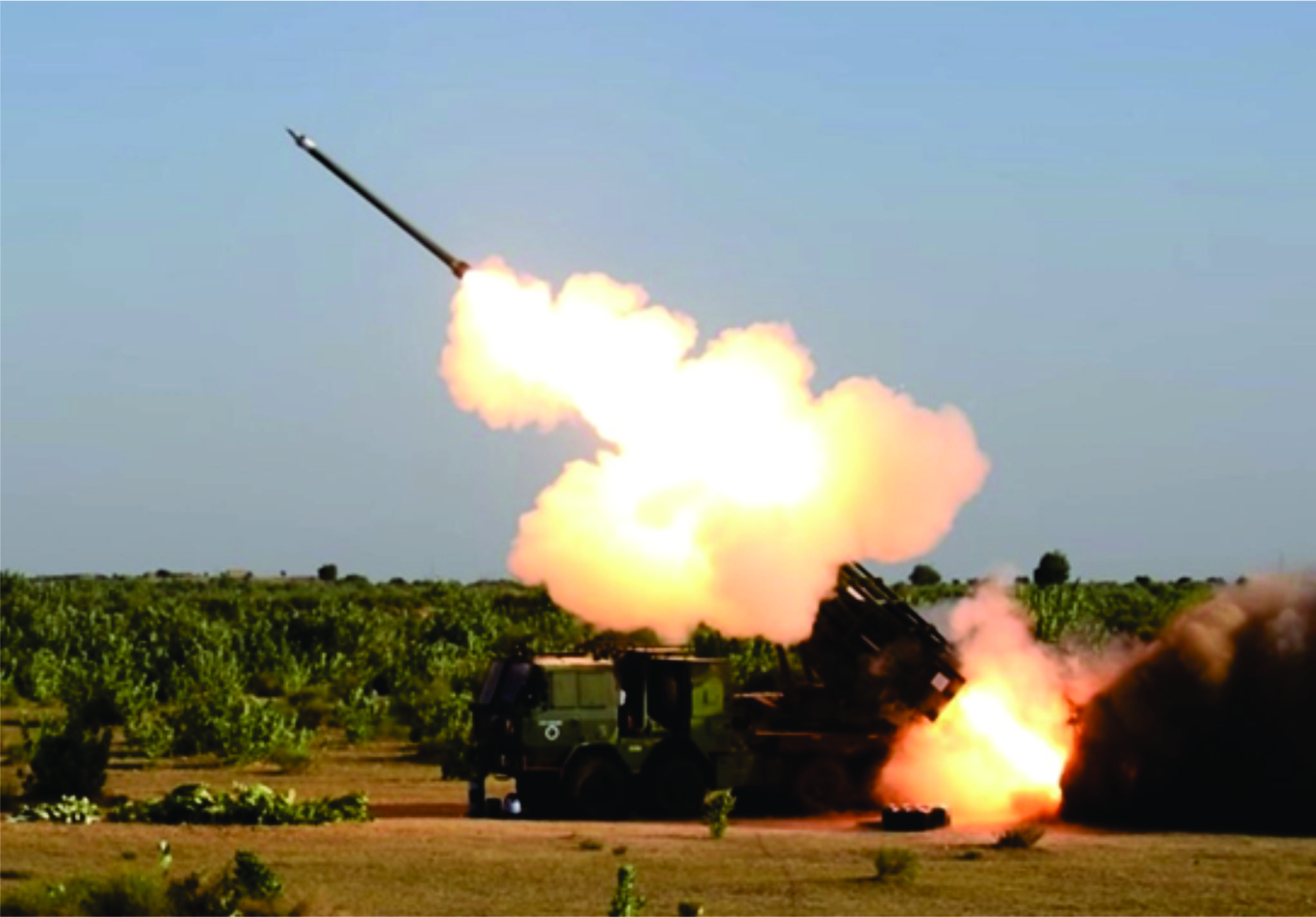
- 22 Nov 2024
In News:
Defence Research and Development Organisation (DRDO) has successfully completed the Flight Tests of Guided Pinaka Weapon System.
Key Details of the Flight Tests:
- Conducted as part of Provisional Staff Qualitative Requirements (PSQR) Validation Trials.
- Tests Phases: Flight tests were carried out in three phases at different field firing ranges.
- Parameters Assessed:
- Ranging (the distance the weapon can accurately target).
- Accuracy (precision of hits).
- Consistency (performance over multiple trials).
- Rate of Fire (ability to fire multiple rockets simultaneously in salvo mode).
Guided Pinaka Weapon System:
- Design and Development:
- Developed by Armament Research and Development Establishment (ARDE) in association with other DRDO labs and production agencies, including:
- Research Centre Imarat,
- Defence Research and Development Laboratory,
- High Energy Materials Research Laboratory,
- Proof & Experimental Establishment.
- Production Agencies: Munitions India Limited, Economic Explosives Limited, Tata Advanced Systems Limited, and Larsen & Toubro.
- Developed by Armament Research and Development Establishment (ARDE) in association with other DRDO labs and production agencies, including:
- Key Features:
- Pinaka: A multi-barrel rocket launcher system named after Lord Shiva’s bow.
- Mobility: Highly mobile, providing quick deployment in battlefield scenarios.
- Firepower: Capable of delivering concentrated firepower on enemy targets.
- Upgraded Version (Pinaka Mark II):
- Extended range: 70 to 80 km.
- Future range targets: 120 km and 300 km.
- Salvo Mode: Tested for the ability to launch 12 rockets simultaneously.
- Significance:
- Strategic Importance: The successful trials enhance the artillery firepower of the Indian Armed Forces.
- Completion of Pre-requisite Trials: The system has successfully completed all flight trials before its induction into the Indian Army.
Prasar Bharati’s OTT Platform – WAVES
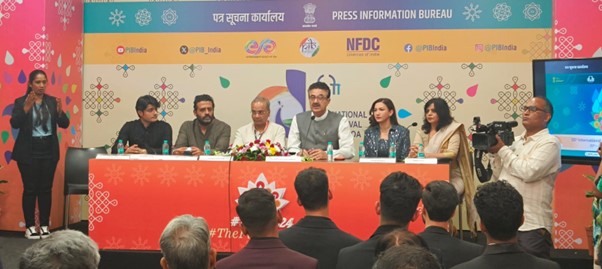
- 22 Nov 2024
In News:
Recently, Prasar Bharati launched its OTT platform WAVES, to cater to India’s increasing demand for digital streaming services.
Key Features of WAVES OTT Platform:
- Content Offered: A mix of classic content and contemporary programming, catering to various audiences.
- Target Audience: Aimed at Indians and those abroad wishing to stay connected to their Indian roots.
- Languages: Available in 12+ languages, including Hindi, English, Bengali, Marathi, Kannada, Malayalam, Telugu, Tamil, Gujarati, Punjabi, Assamese.
- Genres: Spanning 10+ genres, including infotainment, games, current affairs, and news.
- Free Access: Most content is available free to download and view, with exceptions for premium content.
- Additional Features:
- Video on demand.
- Free-to-play gaming.
- Radio streaming.
- Live TV streaming with 65 live channels.
- Online shopping via the Open Network for Digital Commerce (ONDC) supported e-commerce platform.
Content Highlights:
- Fauji 2.0: A modern adaptation of the iconic 1980s Shahrukh Khan show, focusing on lives of people who serve and protect India.
- Kakbhushandi Ramayana: An original show on DD National now available on WAVES, based on research of over 350 versions of the Ramayana worldwide. The show aims to provide a new portrayal of the epic, appealing to younger audiences.
Vision for WAVES OTT:
- WAVES aims to revive nostalgia while embracing modern digital trends.
- It serves as an inclusive platform that highlights Indian culture with an international outlook.
Rare Leucistic Peacock
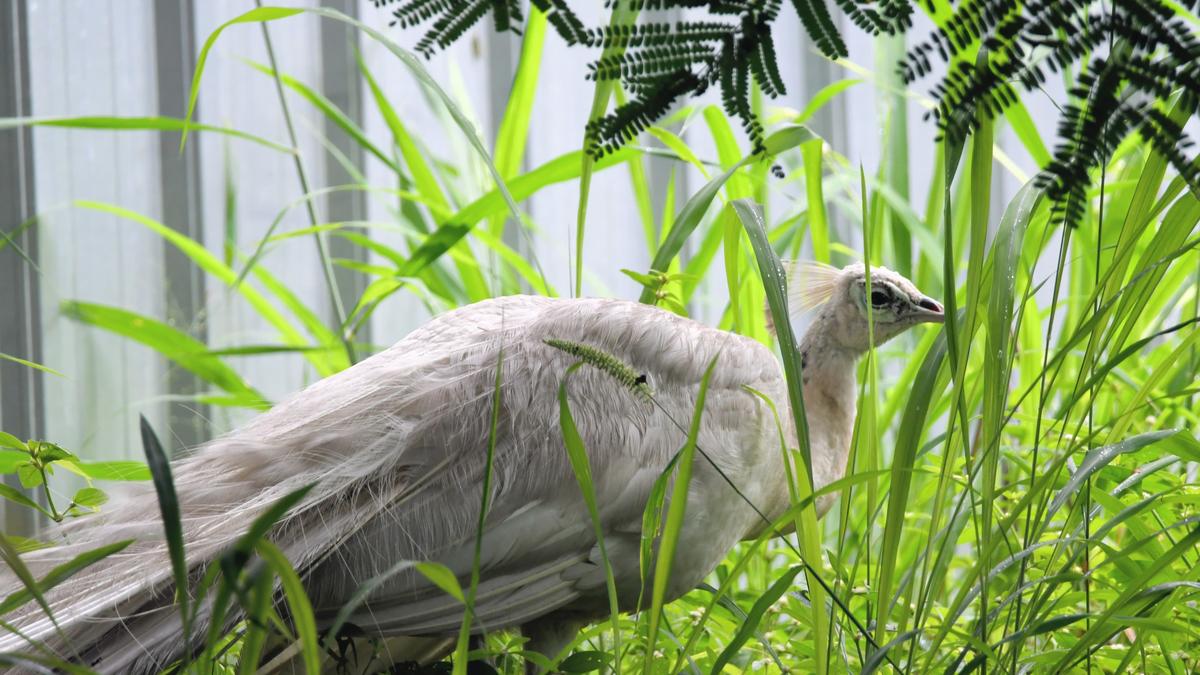
- 22 Nov 2024
In News:
Tamil Nadu Forest Department staff and members of a non-governmental organisation rescued a rare peacock with white feathers, caused by a genetic condition called leucism, in Coimbatore.
Key Highlights:
Incident Details:
- Species: Indian peacock (Pavocristatus), known for its beautiful plumage.
- Condition: The peacock was rescued due to a leg injury and its rare white plumage.
- Cause of White Plumage: The bird's white feathers are caused by leucism, a genetic condition that reduces pigmentation in feathers while leaving eye color unaffected.
Expert Insights:
- Leucism: It causes partial loss of pigmentation in animals. A leucistic animal retains normal eye color but has pale or white coloration.
- Distinction from Albinism: Unlike albinism, which results in a complete lack of melanin and often causes red or pink eyes, leucistic animals retain normal eye pigmentation.
- Identification of Leucism in Peacock: The bird’s dark eyes and pink bill and feet confirmed it as fully leucistic.
Peacock Species:
- Indian Peacock (Pavocristatus): The National Bird of India, native to India and Sri Lanka. It belongs to the Phasianidae family, which also includes pheasants, quails, and jungle fowl.
- Green Peacock (Pavomuticus): Found from Myanmar to Java.
Conservation Status:
- IUCN Status: Listed as Least Concern.
- Wildlife Protection Act, 1972: The Indian peacock is listed under Schedule I, offering it the highest level of legal protection in India.
India’s First AI Data Bank
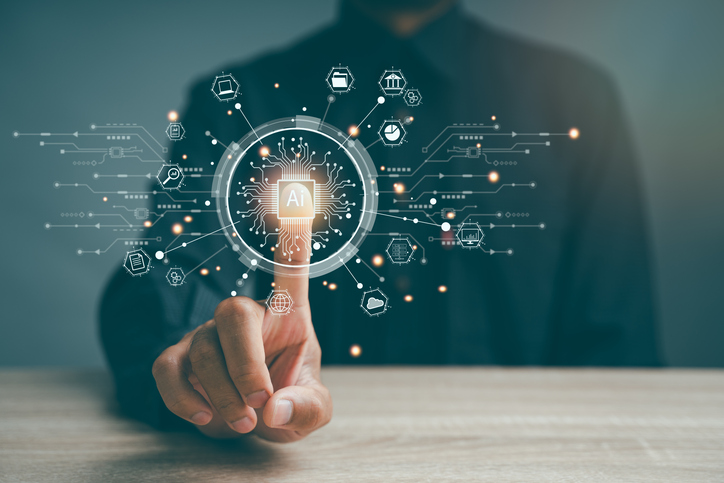
- 22 Nov 2024
In News:
The Ministry of Science and Technologyrecently launched India’s first Artificial Intelligence (AI) data bank that is aimed at propelling innovation and boosting the country’s national securityat the 7th Edition of the ASSOCHAM AI Leadership Meet 2024.
-
- The event theme: “AI for India: Advancing India’s AI Development – Innovation, Ethics, and Governance”.
Key Highlights:
- Objective:
- Propel innovation and enhance national security.
- Provide access to diverse, high-quality datasets for creating scalable and inclusive AI solutions.
- Key Features of the AI Data Bank:
- Target Audience: Researchers, startups, and developers.
- Data Types: Satellite, drone, and IoT data.
- Purpose:
- To enhance national security through real-time analytics.
- Enable predictive analytics for disaster management and cybersecurity.
Strategic Importance of AI in India:
- National Security: AI to strengthen national security by providing real-time analytics from satellite, drone, and IoT data.
- AI for Development:
- AI’s role in reshaping sectors like governance, business, healthcare, education, and space exploration.
- AI as a tool for economic growth, addressing climate change, improving public service delivery, and ensuring national security.
- Ethics and Governance:
- Ensuring responsible AI use with optimal handling.
- Addressing algorithmic bias and data privacy through robust governance frameworks.
- Commitment to transparent and fair AI systems that empower people rather than replace them.
- AI in Disaster Management and Cybersecurity:
- Aligning with India’s goals to use AI for predictive analytics in disaster management.
- Enhancing cybersecurity through AI technologies.
Government’s Vision on AI:
- Empowering Citizens: AI must bridge divides and ensure equitable access to its benefits.
- AI as Backbone for Future Development: India’s focus on making AI an integral part of its future economic and technological growth.
Climate Change Performance (CCPI 2025)
- 22 Nov 2024
In News:
Recently, the Climate Change Performance Index (CCPI 2025) report was released at the annual UN climate conference in Baku.
Key Highlights:
- It is published by think tanks German watch, New Climate Institute, and Climate Action Network International.It was first published in 2005.
- It tracks the progress of the world’s largest emitters in terms of emissions, renewables, and climate policy.
India's Ranking in Climate Change Performance (CCPI 2025)
- India's Rank: 10th (Dropped two places from the previous year).
- Key Factors for India's High Rank:
- Low per capita emissions: 2.9 tons of CO2 equivalent (global average: 6.6 tons).
- Rapid deployment of renewables: India is a leader in solar energy projects, including large-scale solar and rooftop solar schemes.
- Renewable energy targets: Aims for 500 GW of renewable energy capacity by 2030.
- Energy efficiency standards: Introduced, but coverage remains inadequate.
- Electric vehicle (EV) deployment: Significant progress, especially in two-wheelers.
- Challenges for India:
- Heavy reliance on coal: India remains one of the top 10 countries with the largest developed coal reserves.
- Growth-oriented approach: Economic growth and energy demand continue to drive climate action, with limited change in climate policy expected.
- Future Pledges:
- Net-zero emissions by 2070.
- Global leadership in green energy.
CCPI 2025 Rankings Overview
Rank
Country
Key Points
1-3
Empty
No country performed well enough to achieve a "very high" rating.
4
Denmark
Leading climate actions but ranks 4th technically.
5
Netherlands
Strong climate performance, follows Denmark.
6
U.K.
Notable improvement due to coal phase-out and halting new fossil fuel licenses.
10
India
High performer, despite challenges like reliance on coal.
55
China
Largest emitter, heavily reliant on coal, ranks 55th despite promising plans.
57
U.S.
Second-largest emitter, ranks 57th with insufficient climate targets.
59
Argentina
Major climate policy setbacks, including potential exit from Paris Agreement.
64-67
Iran, Saudi Arabia, UAE, Russia
Lowest-ranked, major oil and gas producers with weak climate policies.
General Findings of the Report
- CCPI Methodology: Assesses 63 countries (plus the EU) responsible for 90% of global emissions based on their emissions, renewable energy efforts, and climate policies.
- Global Trends:
- No country has been able to secure a "very high" rating across all categories.
- Denmark and Netherlands are among the top performers.
- The U.K. shows significant progress with its coal phase-out and fossil fuel policies.
Indira Gandhi Prize for Peace, Disarmament, and Development

- 21 Nov 2024
In News:
- Daniel Barenboim (Classical Pianist and Conductor) and Ali Abu Awwad (Palestinian Peace Activist) were jointly awarded the Indira Gandhi Prize for Peace, Disarmament, and Development for 2023.
- Daniel Barenboim was recognized for fostering peace through musical and cultural dialogue initiatives.
- Ali Abu Awwad was honored for his advocacy of peace through dialogue via his organization Roots, which he founded after serving time in Israeli prison.
Significance of the Indira Gandhi Peace Prize:
- The award is given to individuals or organizations who have made outstanding contributions to international peace, disarmament, and development.
- It includes a monetary award of ?25 lakh and a citation.
About the Indira Gandhi Peace Prize:
- Established: 1986 by the Indira Gandhi Memorial Trust in memory of former Prime Minister Indira Gandhi.
- Objective: To honor sustained efforts towards international peace, the development of humanity, and the promotion of disarmament.
- Past recipients: Includes prominent figures and organizations such as Mikhail Gorbachev, UNICEF, Jimmy Carter, Angela Merkel, ISRO, and Sir David Attenborough.
2022 Awardees:
- The Indira Gandhi Peace Prize for 2022 was awarded to the Indian Medical Association and the Trained Nurses Association of India, in recognition of their contribution as COVID-19 warriors.
Key Takeaways:
- The Indira Gandhi Peace Prize is regarded as one of the most prestigious awards for promoting peace, disarmament, and development worldwide.
- Daniel Barenboim's musical initiatives and Ali Abu Awwad's work through dialogue exemplify efforts to bridge divides and promote peaceful resolutions to conflict.
Green World Awards 2024
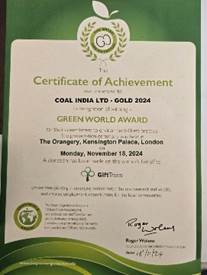
- 21 Nov 2024
In News:
Coal India Limited (CIL) under the aegis of the Ministry of Coal, has been conferred with the esteemed Green World Environment Award in the Corporate Social Responsibility (CSR) category along with the distinguished tile of Green World Ambassador.
Key Highlights:
- Reason for the Award:
- The award was granted to CIL for its Thalassemia Bal SewaYojna, a CSR initiative aimed at providing permanent curative treatment for Thalassemia through Bone Marrow Transplants (BMT).
- The scheme provides financial assistance of up to ?10 lakh for BMT and has helped over 600 Thalassemia patients across India.
- Background of the Award:
- The Green Organization, an independent, non-political, non-profit environmental group, conferred the award.
- The organization has been recognizing and promoting environmental best practices and CSR initiatives globally since its establishment in 1994.
- CIL’s Role in CSR:
- CIL has been a pioneer in CSR, with its Thalassemia Bal SewaYojna being the first of its kind among public sector undertakings in India.
- The initiative partners with 17 prominent hospitals across India to provide stem cell transplants for Thalassemia patients.
- CIL’s Contribution to India's Energy Sector:
- CIL is responsible for producing over 80% of India's coal and contributes to 70% of the total coal-based power generation in the country.
- CIL accounts for 55% of India’s total power generation and meets 40% of the primary commercial energy requirements.
- Environmental Initiatives by CIL:
- CIL has adopted various measures to improve environmental sustainability, including:
- Expanding green cover over mined areas.
- Creating eco-parks and tourism spots.
- Providing mine water for domestic and agricultural use to surrounding villages.
- About Coal India Limited (CIL):
- Established: November 1975.
- Headquarters: Kolkata.
- Status: A Maharatna company and the largest coal-producing company in the world.
- Subsidiaries: CIL has seven producing subsidiaries and is a major corporate employer in India.
- About the Green Organization:
- Founded: 1994.
- Nature: Independent, non-political, non-profit organization.
- Objective: To recognize, reward, and promote environmental and CSR best practices worldwide.
- Initiatives: The Green World Awards are part of global efforts to encourage sustainability and corporate social responsibility.
- Significance of the Award:
- The Green World Environment Award highlights CIL’s commitment to social responsibility and environmental sustainability while maintaining its core role as an energy provider.
- The recognition underscores CIL’s leadership in integrating CSR initiatives with corporate operations to contribute to national development.
Bhu-Neer Portal
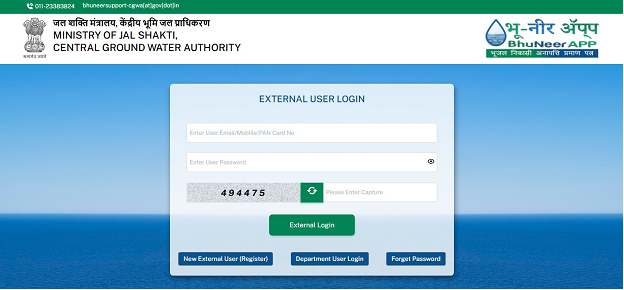
- 21 Nov 2024
In News:
- Minister of Jal Shakti, digitally launched the “Bhu-Neer” portal during the India Water Week 2024.
- Developed by the Central Ground Water Authority (CGWA), under the Ministry of Jal Shakti, in collaboration with the National Informatics Centre (NIC).
Key Highlights:
- Purpose of the Portal:
- Centralized platform for managing and regulating groundwater resources across India.
- Aims to ensure transparency, efficiency, and sustainability in groundwater usage, facilitating easier access to groundwater withdrawal permits.
Key Features:
- User-Friendly Interface: Simplified interface to streamline the application process for groundwater withdrawal.
- PAN-Based Single ID System: Allows seamless user registration, providing a unique identification for all stakeholders.
- NOC with QR Code: Enables verifiable and trackable compliance documents, ensuring authenticity.
- Improved Version: An enhanced version compared to the previous NOCAP system, with improved efficiency and features.
- Streamlined Process Flow: Simplifies the process for obtaining groundwater withdrawal permits.
Goals and Benefits:
- Promotes the sustainable use of groundwater and ensures compliance with legal frameworks at state and national levels.
- Supports Ease of Doing Business: Aligns with the Prime Minister’s vision by making the groundwater regulation process seamless and faceless, reducing bureaucratic delays.
Public Accessibility:
- The portal is now live and accessible to both project proponents and the general public.
- It offers services such as groundwater withdrawal related queries, tracking applications, and payment of statutory charges.
Impact on Groundwater Management:
- The platform is expected to bring improved groundwater regulation by providing centralized access to policies, compliance details, and sustainable practices related to groundwater use.
- It will contribute significantly to monitoring and sustainable management of India’s groundwater resources, crucial in light of increasing water scarcity.
Vision of the Portal:
- In line with the government’s broader goals of digitalization, transparency, and environmental sustainability, the “Bhu-Neer” portal marks a significant step in efficient water resource management.
India’s First Indigenous Antibiotic

- 21 Nov 2024
In News:
- Nafithromycin is India's first indigenously developed antibiotic aimed at combating drug-resistant pneumonia, developed with support from the Biotechnology Industry Research Assistance Council (BIRAC).
- The drug is being marketed under the trade name "Miqnaf" by Wockhardt.
Significance in Combating Drug Resistance:
- Nafithromycin addresses Community-Acquired Bacterial Pneumonia (CABP), a serious disease caused by drug-resistant bacteria.
- Pneumonia is responsible for over 2 million deaths globally annually, with India facing 23% of the global burden.
- The drug is 10 times more effective than current treatments like azithromycin, requiring only three doses for effective treatment, offering a safer and faster solution.
Biotechnology Sector and Public-Private Collaboration:
- BIRAC, under the Department of Biotechnology, supported the research and development of Nafithromycin.
- This achievement underscores the public-private collaboration between the government and pharmaceutical industry, demonstrating India’s capacity to develop indigenous solutions for global health challenges.
Global Health Implications:
- Antimicrobial Resistance (AMR) is a growing global health crisis that prolongs illnesses and raises healthcare costs.
- The new antibiotic offers a vital solution to multi-drug-resistant pathogens, contributing significantly to global health.
- India’s leadership in addressing AMR positions the country as a major player in biotechnology innovation.
Importance for Vulnerable Populations:
- Vulnerable populations, including children, the elderly, and those with weakened immune systems (e.g., diabetes, cancer patients), are particularly affected by drug-resistant pneumonia.
- Nafithromycin offers a much-needed therapeutic option for these groups.
Impact of AMR Awareness:
- The launch coincides with World AMR Awareness Week, emphasizing the urgency of tackling antimicrobial resistance.
- Public awareness, fostered by the COVID-19 pandemic, has increased the focus on biotechnology and its potential to address global health challenges.
Future Prospects:
- Nafithromycin is awaiting final approval from the Central Drugs Standard Control Organization (CDSCO) for manufacturing and public use.
- The launch is expected to lead to future breakthroughs in antibiotic development and contribute significantly to improving public health.
UNICEF’s State of the World’s Children 2024 (SOWC-2024) Report
- 21 Nov 2024
In News:
The world is facing an unprecedented crisis with nearly half of all children – about 1 billion – living in countries that face a high risk of climate and environmental hazards, the UNICEF’s State of the World’s Children 2024 (SOWC-2024) report, said.
Key Highlights:
Environmental Hazards and Children’s Health:
- Children face an increasingly unpredictable and hazardous environment due to climate change, environmental crises, and frontier technologies.
- Nearly 1 billion children live in countries facing high risks from climate and environmental hazards.
- Children’s developing bodies are especially vulnerable to pollution, extreme weather, and environmental hazards.
- Air pollution, rising temperatures, and extreme weather events harm children's respiratory health, increase the spread of diseases like malaria and dengue, and impact food security and access.
Impact of Climate Change:
- Climate destabilization, biodiversity loss, and pollution are intensifying globally.
- Climate-related disasters (e.g., floods) affect water supplies, causing waterborne diseases, a leading cause of death in children under five.
- Extreme weather events, such as floods, can cause trauma, anxiety, and displacement for children.
- By the 2050s, more children will be exposed to extreme climate hazards compared to the 2000s.
- School closures, affecting 400 million children since 2022 due to extreme weather, disrupt education and hinder economic growth.
Projections for Child Survival and Life Expectancy:
- Newborn survival rates: Projected to rise by nearly 4 percentage points to over 98% globally by the 2050s.
- Probability of surviving to age 5: Expected to increase to 99.5%.
- Life expectancy: Expected to rise to 81 years for girls and 76 years for boys by the 2050s.
Child Population Trends by 2050:
- Global child population expected to stabilize at 2.3 billion by the 2050s.
- South Asia, Eastern/Southern Africa, and West/Central Africa will have the largest child populations, facing significant challenges in meeting children’s basic needs.
- These regions also face climate risks, inadequate digital infrastructure, and socio-economic challenges.
Technological Advancements:
- Artificial Intelligence (AI), neurotechnology, renewable energy, and vaccine breakthroughs could significantly improve childhood well-being.
- Digitalization: While it can empower children, it also exposes them to online risks, including sexual exploitation and abuse.
Socio-Economic Conditions and Inequality:
- 23% of children projected to live in low-income countries by 2050, a significant increase from 11% in the 2000s.
- GDP per capita in East Asia, Pacific, and South Asia expected to more than double from the 2020s to the 2050s.
- Growing inequalities between high- and low-income countries, particularly in terms of digital access and infrastructure.
Urbanization and Child Welfare:
- By the 2050s, nearly 60% of children globally will live in urban areas, up from 44% in the 2000s.
- Ensuring healthier and more secure urban environments is critical for improving future childhoods.
- Over 95% of people in high-income countries are connected to the internet, compared to just 26% in low-income countries, exacerbating inequalities.
Key Takeaways:
- Children are facing a more hazardous environment than ever before, influenced by climate change, technological developments, and demographic shifts.
- Proactive measures are needed to mitigate environmental risks, promote digital inclusion, and ensure equitable access to resources and opportunities for children globally.
India’s Polio Eradication Journey
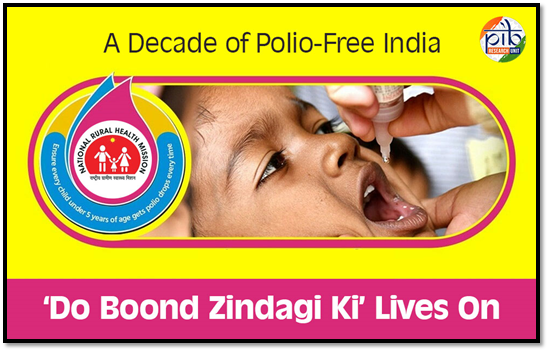
- 20 Nov 2024
In News:
India's achievement of becoming polio-free in 2014 stands as one of the most remarkable successes in global public health. This milestone, which was celebrated worldwide, represents decades of consistent efforts, collaboration, and innovative strategies, culminating in the elimination of wild poliovirus in the country.
Key Milestones in Polio Eradication
- Pulse Polio Programme Launch (1995):
- The Pulse Polio Immunization Programme was a game-changer, initiating large-scale vaccination campaigns across India, with the first nationwide campaign held on 2nd October 1994 (Gandhi Jayanti) in Delhi.
- The campaign used the Oral Polio Vaccine (OPV) and reached over 1 million children.
- The slogan "Do BoondZindagi Ki" (Two drops of life) became synonymous with India’s polio eradication efforts.
- Routine Immunization and System Strengthening:
- The Universal Immunization Programme (UIP), which launched in 1985, made polio one of the first diseases targeted for elimination. UIP is now one of the world’s largest immunization programs, aiming to provide vaccines against 12 preventable diseases, including polio.
- Cold chain management was improved through systems like the National Cold Chain Training Centre (NCCTE) and Electronic Vaccine Intelligence Network (eVIN), ensuring proper storage and distribution of vaccines.
- Inactivated Polio Vaccine (IPV) Introduction (2015):
- As part of the Global Polio Endgame Strategy, India introduced the Inactivated Polio Vaccine (IPV) in 2015 to provide enhanced protection, particularly against type 2 poliovirus.
- This move followed the global transition from trivalent OPV to bivalent OPV (which excludes the type 2 strain) and helped ensure continued protection against all forms of polio.
- Surveillance Systems:
- India implemented Acute Flaccid Paralysis (AFP) Surveillance to track unexplained paralysis in children, a symptom of polio.
- Environmental Surveillance, involving monitoring sewage water for poliovirus strains, played a critical role in identifying potential outbreaks and residual poliovirus transmission.
- Political Will & Community Engagement:
- Strong political commitment from both central and state governments ensured sustained resources and focus on the program.
- Community participation was also vital, with health workers and volunteers working to ensure vaccination coverage in the most remote areas.
The Final Leap: Certification and Maintenance
- 2011 marked the last case of wild poliovirus in Howrah, West Bengal, and India ramped up its surveillance and response efforts to ensure no further cases.
- India achieved polio-free certification from the World Health Organization (WHO) on 27th March 2014, after meeting strict criteria, including three years without wild poliovirus transmission and robust surveillance systems.
Post-Certification Efforts: Keeping Polio at Bay
Even after achieving polio-free status, India remains vigilant to maintain this achievement:
- Annual National Immunization Days (NID) and Sub-National Immunization Days (SNID) are held regularly to boost immunity levels and ensure no child is missed.
- Continuous surveillance and vaccination at international borders help prevent the risk of re-importation of the virus.
- Mission Indradhanush (MI), launched in 2014, aims to increase immunization coverage to 90%, focusing on hard-to-reach areas and improving vaccine coverage.
Ongoing Commitment to Immunization
India’s immunization programs continue to evolve:
- New vaccines like Rotavirus, Pneumococcal Conjugate Vaccine (PCV), and Measles-Rubella (MR) are being added to protect against other vaccine-preventable diseases.
- Mission Indradhanush’s intensified phase has played a crucial role in improving vaccination rates, particularly in underserved areas.
High-Altitude Sickness
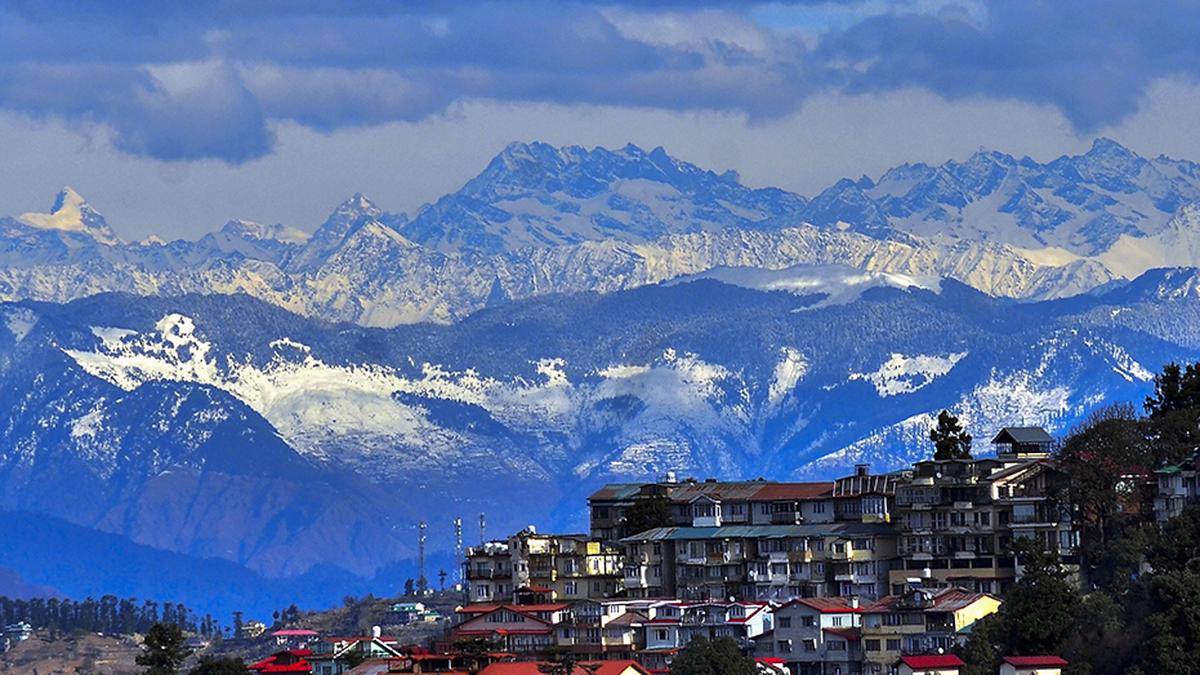
- 20 Nov 2024
In News:
In September, a trekker from Idukki, Kerala, died in Uttarakhand while attempting to scale Garur Peak due to respiratory failure. Every year, numerous tourists like this succumb to the effects of high-altitude sickness in the pristine but challenging inner Himalayas. These regions present hidden dangers due to their extreme altitudes, where thinner air and reduced oxygen can lead to potentially fatal conditions.
What is High-Altitude Sickness?
- Acute Mountain Sickness (AMS) occurs when the body struggles to acclimatize to high altitudes, typically above 8,000 feet (2,400 meters), where oxygen levels are lower.
- As altitude increases, oxygen levels decrease, leading to hypoxia (lack of oxygen). Early symptoms include:Headache, Nausea, Fatigue&Shortness of breath
- If untreated, AMS can develop into:
- High-altitude pulmonary edema (HAPE): Fluid accumulation in the lungs, leading to severe breathing problems.
- High-altitude cerebral edema (HACE): Fluid in the brain causing confusion, hallucinations, or coma.
- Both conditions are life-threatening and require immediate descent to lower altitudes.
Infrastructural Issues
- Many Himalayan regions lack adequate healthcare facilities beyond major towns like Shimla.
- Leh is an exception, with specialized facilities for high-altitude ailments, but most areas lack preventive health measures.
- Implementing health screenings at entry points to high-altitude zones (like Kinnaur or Lahaul-Spiti) could significantly improve prevention and response to AMS.
Mandatory Registration System for Tourists
- Tourist Registration: A system where tourists must register before entering remote mountain areas would allow authorities to monitor movements and provide timely medical assistance.
- Benefits:
- Quick emergency responses by having data on tourists' locations.
- Research support: Tracking demographic patterns and risk factors to better understand how altitude impacts different populations.
Early Intervention for High-Altitude Sickness
- Gradual Ascent: To allow the body to acclimatize, gradual ascent is crucial. Every 3-4 days, take a rest day and avoid increasing sleeping altitude by more than 500 meters/day.
- Medications: Doctors recommend:
- Acetazolamide to promote better oxygenation.
- Dexamethasone for reducing inflammation in severe cases.
- For those with a history of HAPE, Nifedipine may be used preventively.
- However, no medication guarantees immunity from AMS. Travelers with pre-existing conditions should consult a doctor before traveling.
Treatment Strategies
- Descent: The best treatment for AMS is to descend to lower altitudes (300-1,000 meters), where symptoms improve rapidly.
- Additional Measures: If available, supplemental oxygen or a portable hyperbaric chamber can help in emergencies.
- Medications like acetazolamide and dexamethasone can provide short-term relief but are not substitutes for descent.
Policy Recommendations
- Medical Infrastructure: Establish state-of-the-art medical facilities in high-altitude regions of the Himalayas.
- Research: Set up research centers to study high-altitude illnesses.
- Air-ambulance Services: Equip states with air-ambulance services for rapid medical evacuation in emergencies.
- Health and Safety Information: Provide accessible information on government websites and at check-in points to educate tourists on preventing and managing AMS.
Preventive Measures Before Scaling the Himalayas
- Acclimatization: Gradual ascent is essential for preventing AMS.
- Health Checks: Get a medical check-up to assess risk factors before travel.
- Medications: Consult a doctor for potential preventive medications.
- Hydration and Rest: Stay hydrated and take ample rest during the ascent.
- Monitor Symptoms: Be aware of early symptoms like headaches or nausea and stop ascending if they occur.
By addressing these measures, the risks associated with high-altitude sickness can be mitigated, improving safety for tourists and trekkers in the Himalayas.
Army Tactical Missile System (ATACMS)

- 20 Nov 2024
In News:
- Russia reported that Ukraine fired six US-made Army Tactical Missile System (ATACMS) missiles at Bryansk, Russia, marking a significant escalation in the ongoing conflict.
- This came after US President Joe Biden authorized Ukraine to use long-range missiles to strike deeper inside Russian territory, easing previous restrictions on such weapons
About the Army Tactical Missile System (ATACMS)
- Overview:
- ATACMS is a surface-to-surface artillery weapon system designed to strike targets at much greater ranges than conventional artillery, rockets, or missiles.
- Manufacturer: Produced by Lockheed Martin, a leading US defense contractor.
- First Use: It was first used during the 1991 Persian Gulf War.
- Key Features:
- Guidance: ATACMS missiles are inertially guided ballistic missiles, capable of operating in all weather conditions.
- Range: Approximately 190 miles (305 km).
- Propulsion: It uses a single-stage, solid propellant for propulsion.
- Launch Platforms: Fired from platforms like the High Mobility Artillery Rocket System (HIMARS) and the M270 Multiple Launch Rocket System (MLRS).
- Payload: ATACMS missiles can carry cluster munitions, releasing hundreds of smaller bomblets over a targeted area, increasing their destructive power.
- Global Operators:Besides the US, ATACMS is also operated by countries such as Bahrain, Greece, South Korea, Taiwan, and the United Arab Emirates.
SanyuktVimochan 2024
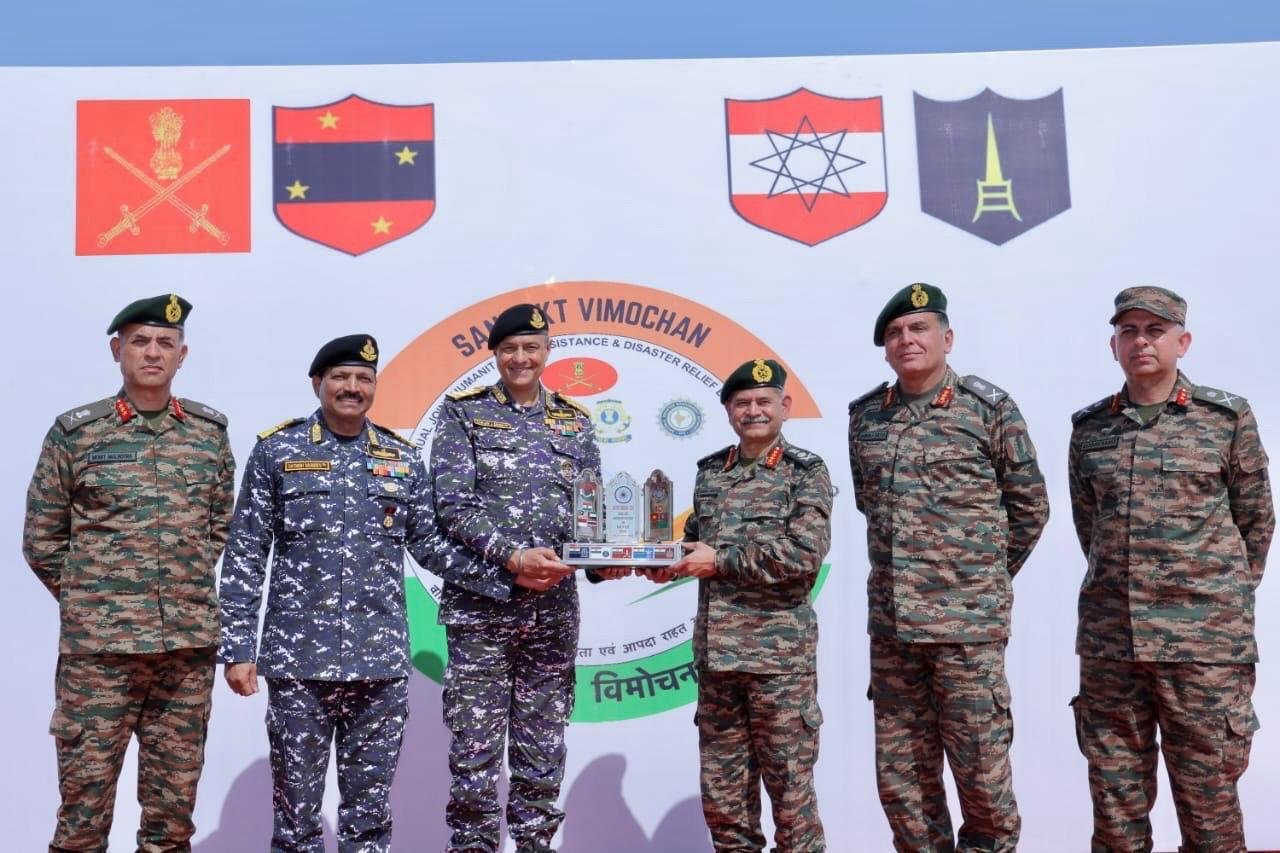
- 20 Nov 2024
In News:
Recently, the Indian Army successfully conducted the Multilateral Annual Joint Humanitarian Assistance and Disaster Relief (HADR) Exercise, 'SanyuktVimochan 2024' at Ahmedabad and Porbandar, Gujarat.
Key Highlights:
- Conducted by: Konark Corps of Southern Command, Indian Army.
- Day 1: Tabletop Exercise (TTX)
- Theme: 'Cyclone in Coastal Region of Gujarat'.
- Focused on simulating a cyclone scenario affecting the Okha-Porbandar coastline.
- Discussed disaster relief strategies and interagency cooperation to improve response readiness.
- Attended by senior officials from NDMA, Armed Forces, State Disaster Management, and industry representatives, including delegates from nine foreign countries.
- Day 2: Multi-Agency Capability Demonstration
- Held at Chowpatty Beach, Porbandar.
- Simulated Disaster Scenario: Coordinated response to a cyclone, showcasing joint operations by:
- Indian Army, Navy, Air Force, Coast Guard, NDRF, SDRF, and other Central and State agencies.
- Key actions demonstrated:
- Requisition and Surveillance: Civil administration’s request for Armed Forces' assistance, followed by area surveillance.
- Rescue Operations: Insertion of personnel to rescue casualties.
- Casualty Evacuation: Use of resources to evacuate and assist victims.
- Resuscitation and Rehabilitation: Restoration efforts for affected citizens.
- Industrial Display &Atmanirbhar Bharat Initiative:
- Showcased indigenous HADR equipment from Indian defense industries.
- Highlighted technological advancements and self-reliance in disaster management.
- SanyuktVimochan 2024 enhanced India's disaster response capabilities, ensuring a coordinated and effective approach to humanitarian assistance.
- The exercise also bolstered India’s leadership in global disaster relief, contributing to international best practices and collaborative efforts in humanitarian assistance and disaster response.
Sickle Cell Eradication

- 20 Nov 2024
In News:
- On the occasion of Janjatiya Gaurav Diwason 15th November 2024, Hon’ble Governor of Madhya Pradesh, and Chief Minister unveiled a commemorative postage stamp dedicated to "Sickle Cell Eradication - 2047" at PG College, Dhar.
- Significance:Focuses on India’s commitment to eradicate Sickle Cell Anemia by 2047, especially in tribal communities.
Sickle Cell Anemia Overview
- What is Sickle Cell Anemia?
- Genetic blood disorder leading to abnormal hemoglobin.
- Red blood cells become sickle-shaped, blocking blood flow and causing pain, organ damage, and reduced life expectancy.
- Symptoms:
- Chronic anemia causing fatigue, weakness, and pallor.
- Painful episodes (sickle cell crisis) resulting in intense pain in bones, chest, and limbs.
- Delayed growth and puberty in children.
- Treatment Processes:
- Blood Transfusions: Relieve anemia and reduce pain crises.
- Hydroxyurea: Reduces the frequency of painful episodes.
- Gene Therapy: Includes bone marrow or stem cell transplants and methods like CRISPR for treatment.
Challenges of Sickle Cell Disease (SCD) in India
- Tribal Population Impact:
- India has the world’s largest tribal population (~67.8 million, 8.6% of total population as per 2011 Census).
- Sickle Cell Disease (SCD) is identified as one of the top 10 health issues for tribal communities.
- Challenges:
- Limited diagnostic and treatment facilities in remote tribal regions.
- Lack of awareness about genetic counseling and preventive care.
- High treatment costs (e.g., CRISPR therapy costs USD 2-3 million).
- Bone marrow donor availability is a challenge.
Government Initiatives for SCD Management
- National Sickle Cell Anaemia Elimination Mission (2023):
- Objective: Eliminate SCD as a public health issue by 2047.
- Key Features:
- Community Screening: Mass screening to identify at-risk individuals.
- Genetic Counseling: Educating families on genetic nature of SCD.
- Advanced Diagnostics: Use of tools like HPLC for accurate diagnosis.
- Prenatal Testing: Partnership with organizations like Sankalp India.
- Newborn Screening: AIIMS Bhopal provides early detection.
- Technology: A mobile app and National Sickle Cell Portal for tracking data.
- Progress:Over 3.37 crore people screened, with 3.22 crore confirmed negative.
- Target Groups:Focus on children, adolescents, youth, and adults for screening, counseling, and care.
- National Health Mission (NHM) (2013):
- Emphasizes disease prevention and management, particularly for hereditary conditions like sickle cell.
- Facilitates medications like hydroxyurea for treatment.
- National Guidelines for Stem Cell Research (2017):Regulates stem cell therapies and allows Bone Marrow Transplantation (BMT) for SCD.
- National Guidelines for Gene Therapy (2019):Guidelines for gene therapies for inherited disorders, including CRISPR treatment for SCD.
- State Haemoglobinopathy Mission of Madhya Pradesh:Addresses screening and management challenges of SCD in the state.
Global Awareness and Observances
- World Sickle Cell Awareness Day:
- Observed on 19th June annually, with the 2024 theme: "Hope Through Progress: Advancing Sickle Cell Care Globally".
- Aimed at raising awareness about SCD struggles, improving patient care, and finding a cure.
Bharat NCX 2024

- 19 Nov 2024
In News:
The Bharat National Cyber Security Exercise (Bharat NCX 2024), inaugurated on November 18, 2024, is a key initiative aimed at strengthening India’s cybersecurity resilience. This 12-day exercise is designed to equip cybersecurity professionals and national leadership with the skills to manage complex cyber threats, enhance incident response capabilities, and improve strategic decision-making. The event is organized by the National Security Council Secretariat (NSCS) in collaboration with Rashtriya Raksha University (RRU).
Key Details of Bharat NCX 2024:
- Cyber Defense and Incident Response Training
- The exercise focuses on defensive cybersecurity skills, preparing participants to defend against cyberattacks.
- Live-fire simulations will provide hands-on experience with real-time cyberattacks on IT and Operational Technology (OT) systems.
- Strategic Decision-Making Simulations
- A core component is the Strategic Decision-Making Exercise, where senior management from across sectors will simulate decision-making in a national-level cyber crisis.
- This exercise enhances their ability to respond swiftly and strategically in high-pressure scenarios.
- CISO’s Conclave
- The CISO's Conclave brings together Chief Information Security Officers (CISOs) from government, public, and private sectors.
- The conclave will feature panel discussions on the latest cybersecurity trends and government initiatives, allowing professionals to exchange knowledge and collaborate.
- Bharat Cybersecurity Startup Exhibition
- An exhibition will highlight innovative cybersecurity solutions developed by Indian startups. This showcases the growing role of the private sector in strengthening India’s cybersecurity infrastructure.
- Leadership Engagement and Capacity Building
- Leadership engagement is a key feature, ensuring that high-level decision-makers are prepared to lead national cybersecurity efforts.
- The exercise will foster a unified approach to dealing with emerging cyber threats.
Significance for India’s Cybersecurity Strategy
- National Cybersecurity Resilience: Bharat NCX 2024 is a vital step in fortifying India’s cybersecurity defenses, preparing professionals and leadership to address the evolving cyber threat landscape.
- Collaboration and Innovation: The inclusion of industry stakeholders, startups, and leaders from various sectors underscores the importance of collaboration in developing innovative solutions to cybersecurity challenges.
- Capacity Building: The exercise aims to improve decision-making at all levels, helping India build a robust cybersecurity framework to secure its critical infrastructure and respond effectively to potential cyber crises.
Grand Commander of the Order of the Niger
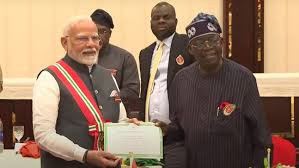
- 19 Nov 2024
In News:
PM Modi receives Nigeria’s second-highest national award.
Key Events and Achievements
- Award Conferred:
- Award Name: Grand Commander of the Order of the Niger (GCON).
- Significance: Nigeria’s second-highest national award, conferred on Prime Minister Narendra Modi.
- Historical Context: Modi becomes the second foreign dignitary to receive this award, after Queen Elizabeth in 1969.
Strategic and Developmental Ties Between India and Nigeria
- First Visit in 17 Years: Modi’s visit is the first by an Indian PM to Nigeria in 17 years, underscoring the significance of strengthening bilateral ties.
- Economic Cooperation:
- Over 200 Indian companies have invested around $27 billion in Nigeria across key sectors, making India a major economic partner.
- India has provided $100 million in development assistance through concessional loans and is actively involved in capacity-building training programs in Nigeria.
- MoUs Signed:
- Three Memoranda of Understanding (MoUs) were signed in the fields of:
- Cultural Exchange.
- Customs Cooperation.
- Survey Cooperation.
- Three Memoranda of Understanding (MoUs) were signed in the fields of:
- Relief Aid: Modi announced the dispatch of 20 tonnes of relief supplies to help Nigeria recover from the devastating floods that affected the country last month.
Diplomatic Discussions and Initiatives
- Strategic Partnership: Modi described the India-Nigeria partnership as one with immense potential in sectors like defence, energy, technology, trade, health, and education.
- Indian Expatriate Community: Modi acknowledged the 60,000-strong Indian diaspora in Nigeria, recognizing their role as a pillar of bilateral ties.
- Support for Africa:
- Modi highlighted India’s support for the African Union’s membership in the G20, an outcome of the India-hosted G20 summit in 2023.
- Nigeria’s Role: He noted Nigeria’s positive influence on Africa and its importance as a key partner in India’s Africa engagement.
Broader Implications for International Relations
- India-Nigeria Security Cooperation:
- The National Security Advisors (NSA) of India and Nigeria held in-depth discussions on counter-terrorism, extremism, and cybersecurity challenges.
- India and Nigeria are committed to jointly addressing global threats such as arms smuggling and international crime.
- India's Role as a Development Partner:
- India’s growing role as a development partner for African nations is becoming increasingly important, exemplified by Nigeria’s close ties with India.
- Global Diplomacy and Soft Power:
- Modi’s award and visit reflect India’s growing influence in Africa and its emphasis on fostering ties with resource-rich and strategically located nations like Nigeria.
- The Grand Commander of the Order of the Niger is also a reflection of the soft power India is wielding globally.
Key Facts about Nigeria:
- Location: Nigeria is located in West Africa, bordering Niger, Chad, Cameroon, and Benin, with access to the Atlantic Ocean.
- Significance:
- Known as the “Giant of Africa” due to its large population and economic power.
- It has the largest economy in Africa, largely driven by its oil reserves.
Graded Response Action Plan (GRAP-IV)
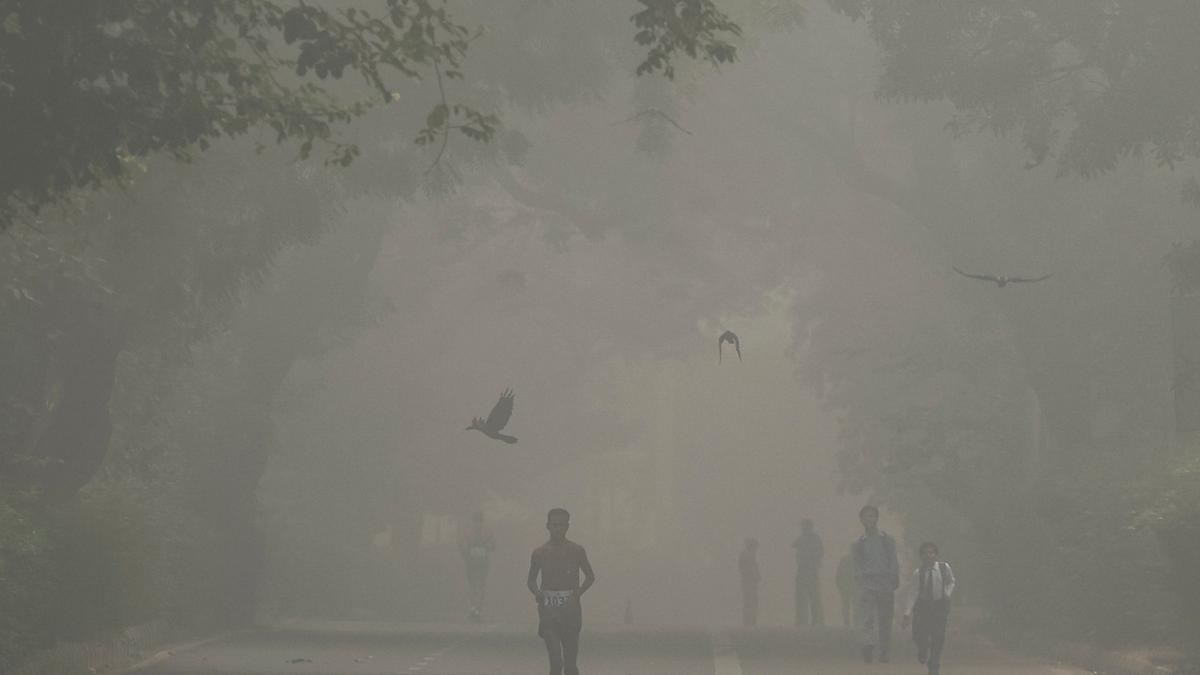
- 19 Nov 2024
In News:
As Delhi’s AQI worsened, the Commission for Air Quality Management issued the order to activate Stage-IV of the Graded Response Action Plan.
Restrictions Under GRAP-IV in Delhi-NCR
- Truck Movement:
- Banned except for essential goods and trucks using clean fuels (LNG, CNG, BS-VI diesel, or electric).
- Non-essential light commercial vehicles registered outside Delhi are also banned unless they are CNG or BS-VI diesel or electric vehicles (EVs).
- Delhi-registered BS-IV or older diesel vehicles (medium and heavy goods vehicles) are banned, except for those in essential services.
- Construction Activities:Suspension of all construction work, including public projects like highways, roads, flyovers, power lines, pipelines, etc.
- Schools and Work:
- Online classes for students of Classes 6 to 9 and Class 11.
- Work from home (WFH) recommendations for 50% office capacity in NCR.
- Central government employees may also be asked to work from home.
- Offline classes for Classes 10 and 12 continue, but schools for other classes must shift to online mode.
- Other Measures:
- State governments may impose additional measures such as:
- Closure of colleges.
- Odd-even vehicle scheme.
- Restrictions on non-essential commercial activities.
- State governments may impose additional measures such as:
About GRAP (Graded Response Action Plan)
- Purpose: A plan to reduce air pollution in the Delhi-NCR region based on AQI levels.
- Approved By: Supreme Court in 2016 (M.C. Mehta v. Union of India).
- Notified by MoEFCC: 2017.
- Implementation Authority: CAQM (Commission for Air Quality Management).
Stages of GRAP
GRAP is an incremental system, with measures activated as air quality deteriorates:
- Stage 1: Poor AQI (201-300) – Basic pollution control measures.
- Stage 2: Very Poor AQI (301-400) – Enhanced measures.
- Stage 3: Severe AQI (401-450) – Stricter actions like shutting down industries.
- Stage 4: Severe Plus AQI (Above 450) – Most stringent restrictions, as activated on November 18, 2024.
Air Quality Index (AQI)
- Introduced: 2014, by Central Pollution Control Board (CPCB).
- Categories:
- Good: 0-50
- Satisfactory: 51-100
- Moderately Polluted: 101-200
- Poor: 201-300
- Very Poor: 301-400
- Severe: 401-450
- Severe Plus: 451 and above (current status in Delhi).
- Pollutants Considered: PM10, PM2.5, NO?, SO?, CO, O?, NH?, and Pb.
- Measurement: 24-hour average values for PMs, and 8-hour averages for CO and O?.
Commission for Air Quality Management (CAQM)
- Established: Under the Commission for Air Quality Management in National Capital Region (NCR) Act, 2021.
- Mandate: To coordinate, research, and manage air quality issues in the NCR and adjoining areas.
- Composition: Includes government officials, technical experts, and NGO representatives.
- Jurisdiction: Covers Delhi and parts of Haryana, Uttar Pradesh, and Rajasthan.
Nepal-Bangladesh Power Transfer via India
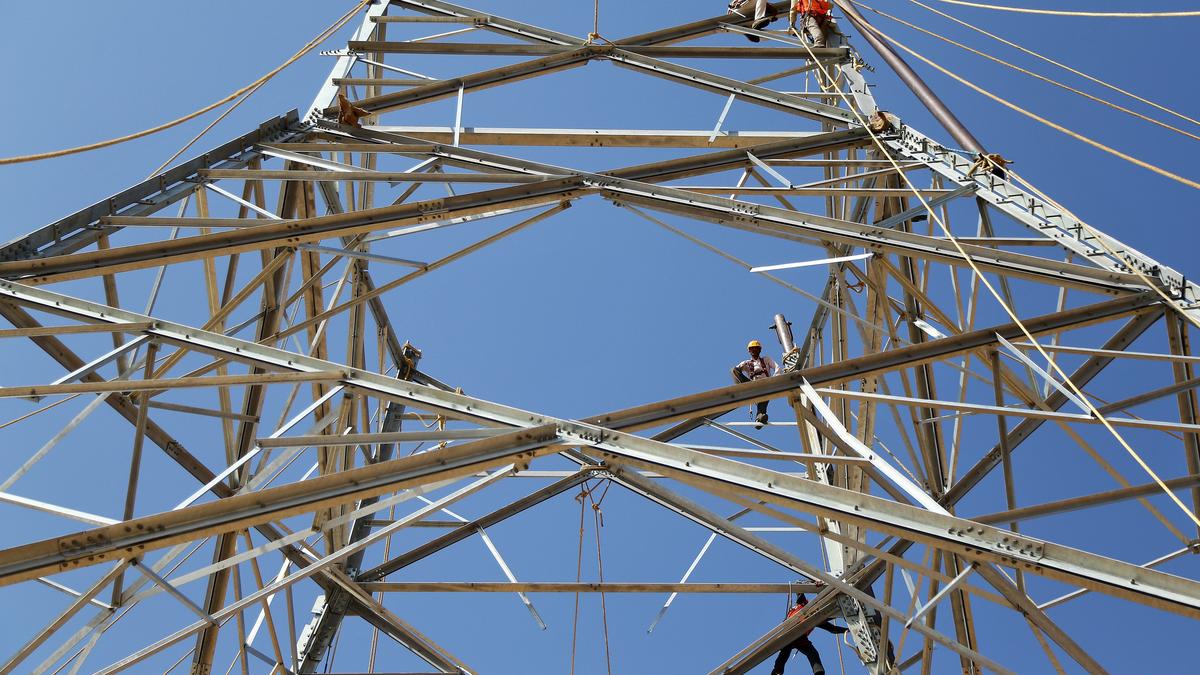
- 19 Nov 2024
In News:
Nepal starts exporting energy to Bangladesh with Indian grid support.
Significance of the Power Transfer:
- Energy Cooperation:
- A major step in regional energy cooperation among Nepal, India, and Bangladesh.
- Strengthens sub-regional connectivity in the power sector.
- Nepal’s Hydropower Potential:
- Nepal, a Himalayan nation, possesses untapped hydropower resources, and this agreement opens the door for future cross-border electricity cooperation.
- Nepal’s energy exports are a green energy initiative, supporting sustainable industrial growth in Bangladesh and regional prosperity.
- Electricity Crisis in Bangladesh:
- Bangladesh is facing an ongoing electricity shortage, worsened by the suspension of power supply from Adani’s Godda plant and the maintenance of the Payra thermal unit.
- The addition of 40 MW of Nepalese hydroelectric power aims to alleviate the energy shortfall in Bangladesh.
Tripartite Power Sales Agreement:
- Agreement Details:
- The agreement for power transfer was signed in October 2023 between:
- NTPC Vidyut Vyapar Nigam (NVVN) (India)
- Nepal Electricity Authority (NEA) (Nepal)
- Bangladesh Power Development Board (BPDB) (Bangladesh).
- Power Export: Nepal has started exporting 40 MW of electricity, which marks a significant milestone in trilateral power cooperation.
- The agreement for power transfer was signed in October 2023 between:
Key Entities Involved:
- NTPC Vidyut Vyapar Nigam (NVVN):
- A wholly owned subsidiary of NTPC Ltd. (National Thermal Power Corporation), created to facilitate power trading.
- NVVN is diversifying into renewables, e-mobility, and green fuel solutions.
- NTPC Ltd.:
- A Maharatna PSU under India’s Ministry of Power, established to develop power resources in India.
- Involved in large-scale power generation and clean energy initiatives
Guru Ghasidas-TamorPingla Tiger Reserve
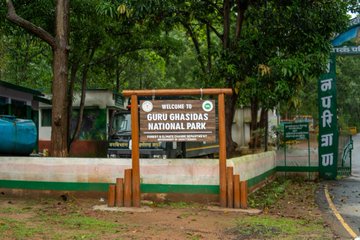
- 19 Nov 2024
In News:
The Guru Ghasidas-TamorPingla Tiger Reserve in Chhattisgarh has been officially notified as India's 56th tiger reserve, marking a significant milestone in the country's conservation efforts. Here's an overview of this new reserve:
Key Details:
- Location: The tiger reserve is located across the Manendragarh-Chirmiri-Bharatpur, Korea, Surajpur, and Balrampur districts of Chhattisgarh.
- Area: The reserve spans 2,829.38 square kilometers and includes both core and buffer zones.
- Core/critical habitat: 2,049.2 sq. km (includes the Guru Ghasidas National Park and TamorPingla Wildlife Sanctuary).
- Buffer zone: 780.15 sq. km.
- Rank: It is the third largest tiger reserve in India, after the Nagarjunasagar-Srisailam Tiger Reserve (Andhra Pradesh) and Manas Tiger Reserve (Assam).
Connectivity:
The reserve forms part of a landscape complex that extends over nearly 4,500 sq. km and is interconnected with other major tiger reserves:
- Sanjay Dubri Tiger Reserve (Madhya Pradesh) to the north.
- Bandhavgarh Tiger Reserve (Madhya Pradesh) to the west.
- Palamau Tiger Reserve (Jharkhand) to the east.
This connectivity supports greater wildlife movement, reducing the risk of inbreeding and strengthening the overall conservation efforts for the tiger population.
Biodiversity:
The Guru Ghasidas-TamorPingla Tiger Reserve is ecologically rich, harboring a wide array of species:
- 753 species have been documented, including:
- 230 bird species.
- 55 mammal species, including several threatened species such as tigers, leopards, sloth bears, and wolves.
- A variety of invertebrates, especially insects.
- The reserve's terrain includes dense forests, streams, rivers, and varied elevations, making it an ideal habitat for tigers and other wildlife.
Ecological Importance:
- Situated in the Chota Nagpur and Baghelkhand plateaus, the reserve has varied landscapes that contribute to its ecological diversity. The region's tropical climate and dense forests make it a critical habitat for tigers and other wildlife.
- The reserve's core area forms an important critical tiger habitat, providing a sanctuary for tigers to thrive with minimal human disturbance.
Conservation Impact:
With the addition of this tiger reserve, Chhattisgarh now boasts four tiger reserves, complementing the existing Udanti-Sitanadi, Achanakmar, and Indravati reserves. This bolsters the state's and the country's ongoing efforts to protect and conserve tigers, which are a keystone species in maintaining ecological balance.
Procedural Steps for Notification:
- Identification: The state government identifies a significant ecological area with potential for tiger conservation.
- NTCA Approval: After a thorough assessment, the National Tiger Conservation Authority (NTCA) evaluates and approves the proposal.
- State Notification: The state government officially notifies the area as a tiger reserve under the Wildlife Protection Act of 1972.
- Implementation: The state, with NTCA support, begins implementing conservation and management strategies.
Mystery mollusk
- 18 Nov 2024
In News:
- In a groundbreaking discovery, researchers have identified a new species of sea slug deep within the ocean’s midnight zone—a place that lies between 3,300 to 13,100 feet (1,000 to 4,000 meters) below the ocean's surface.
- The species, named Bathydeviuscaudactylus, is a glowing, swimming sea slug that exhibits several unique adaptations to survive in the extreme conditions of the deep ocean.
Key Features of BathydeviusCaudactylus
- Glowing Bioluminescence: One of the most striking features of this newly discovered mollusk is its ability to glow with bioluminescence. Bathydevius emits a soft, starry glow, an adaptation seen in only a few deep-sea species. The glowing feature plays a role in distracting predators and even includes the ability to detach glowing projections from its tail as a decoy.
- Unique Body Structure: Unlike most sea slugs that typically live on the seafloor, Bathydevius has evolved to thrive in the open water. It has a gelatinous, paddle-like tail and a large, bowl-shaped hood that covers its internal organs, making it appear somewhat like a “megaphone with a feathered tail.” This structure helps it capture prey, such as mysid shrimp, which it traps using its hood.
- Adaptations for Deep Sea Life: Bathydevius' transparent body, along with its ability to drift with ocean currents and flex its body to move vertically in the water column, allow it to navigate the depths of the midnight zone. Its hermaphroditic nature means it carries both male and female reproductive organs, allowing it to reproduce by attaching to the seafloor and laying eggs when needed.
Discovery and Exploration
- The unusual species was first encountered by researchers from the Monterey Bay Aquarium Research Institute (MBARI) during a deep-sea dive in February 2000 using a remotely operated vehicle (ROV) called Tiburon. Since then, more than 150 sightings have been made of the creature in the waters off the Pacific Coast of North America, ranging from Oregon to Southern California.
- Interestingly, similar creatures have been observed by the National Oceanic and Atmospheric Administration (NOAA) in the Mariana Trench, suggesting that Bathydevius may have a wider range than initially thought. A specimen was eventually collected for further study, revealing its identity as a nudibranch, a type of soft-bodied marine mollusk.
Survival Tactics and Behavior
- Prey Capture: Unlike typical sea slugs that scrape food from the seafloor, Bathydevius uses its large hood to trap crustaceans like mysid shrimp. This allows it to thrive in the open ocean where food can be harder to obtain.
- Defensive Mechanisms: When threatened, Bathydevius can glow with bioluminescence to distract predators. This glow, which creates a starry appearance across its back, has been seen in other deep-sea species but is rare in nudibranchs. Additionally, it can detach part of its tail (a glowing projection) to confuse attackers, similar to how lizards shed their tails as a defense mechanism.
- Reproduction and Movement: As a hermaphrodite, Bathydevius has the ability to self-fertilize or mate with other individuals. During reproduction, it descends to the seafloor and uses its foot to temporarily attach, releasing eggs before returning to its swimming lifestyle. It also relies on its flexible, transparent body to blend in with the surroundings and evade predators.
India Successfully Tests Long-Range Hypersonic Missile

- 18 Nov 2024
In News:
- India has made a major advancement in its defense capabilities with the successful flight test of its first long-range hypersonic missile, marking a historic moment in the country's defense technology.
- The test was conducted, by the Defence Research and Development Organisation (DRDO), took place off the coast of Odisha from the Dr. A.P.J. Abdul Kalam Island.
- The missile has a range of over 1,500 km and is capable of carrying various payloads for all branches of the armed forces.
Key Highlights of the Test:
- Successful Trial: The missile successfully completed its flight test with high accuracy, confirmed by the data gathered from down-range ship stations. It performed a series of terminal maneuvers, validating its precision targeting capabilities.
- Speed and Range: The missile achieved hypersonic speeds (Mach 6), or six times the speed of sound, and is designed for a range of more than 1,500 km, far exceeding the capabilities of many conventional missiles.
- Indigenous Development: This missile is a product of DRDO's indigenous efforts, developed with contributions from the Dr. APJ Abdul Kalam Missile Complex in Hyderabad, as well as other DRDO laboratories and industry partners.
What are Hypersonic Missiles?
- Definition: Hypersonic missiles are defined as weapons that travel at speeds greater than Mach 5 (five times the speed of sound), or about 3,836 miles per hour (6,174 km/h). At such speeds, they are incredibly difficult to track and intercept, posing a challenge for traditional missile defense systems.
- Types:
- Hypersonic Glide Vehicles (HGVs): These are launched from rockets and glide towards their target.
- Hypersonic Cruise Missiles (HCMs): These missiles use air-breathing engines like scramjets for sustained flight at hypersonic speeds.
- Advantages: Hypersonic missiles offer several advantages, including:
- Responsive strike capability: They can target time-sensitive threats quickly and with high precision.
- Manoeuvrability: Unlike ballistic missiles, which follow a predictable parabolic trajectory, hypersonic missiles can change course mid-flight, making them harder to defend against.
- Challenges:
- Heat and air resistance: Traveling at such high speeds generates tremendous heat due to friction, presenting engineering challenges.
- Tracking and interception: Their low-altitude flight and high speeds make them harder to detect and intercept with existing missile defense systems.
- High costs: Developing and deploying hypersonic weapons comes at a higher cost than traditional missile systems.
Global Context of Hypersonic Weaponry
- Russia and China: Both Russia and China are leaders in hypersonic missile technology. Russia has already deployed the Kinzhal hypersonic missile in Ukraine, demonstrating its effectiveness in combat situations.
- United States: The U.S. is also making significant advancements, with contracts like the Long Range Hypersonic Weapon (LRHW), awarded to Lockheed Martin for continued development.
- Other Nations: Countries such as France, Germany, Australia, Japan, and Israel are also actively working on developing hypersonic missile systems.
WIPO 2024 Report

- 18 Nov 2024
In News:
India continues to make significant strides in intellectual property filings, ranking among the top 10 countries for patents, trademarks, and industrial designs.
India’s Performance in Global Intellectual Property (IP) Filings:
- Overall Growth: India continues to make significant strides in intellectual property filings, ranking among the top 10 countries for patents, trademarks, and industrial designs.
- Patent Applications: India recorded a +15.7% growth in patent applications in 2023, marking its fifth consecutive year of double-digit growth, placing it among the top contributors to global patent filings.
- Trademark Filings: India ranks 4th globally in trademark filings, reflecting the country’s growing focus on brand protection.
- Industrial Designs: India saw a 36.4% surge in industrial design applications, emphasizing creativity and design innovation.
India’s Global Patent Ranking:
- Global Rank: India ranks 6th globally for patent applications with 64,480 filings in 2023.
- Resident Filings: For the first time, over half (55.2%) of India’s patent applications were filed by residents, highlighting growing domestic innovation.
- Patent Grants: A 149.4% increase in granted patents in 2023 underscores the efficiency of India’s patent office and the rising quality of applications.
Key Metrics and Trends in Patents:
- Patent-to-GDP Ratio: India’s patent-to-GDP ratio grew from 144 in 2013 to 381 in 2023, signaling a knowledge-driven economy.
- Sectoral Diversity: India’s patent filings span diverse sectors, including agriculture, pharmaceuticals, IT, and renewable energy, showcasing the broad scope of innovation.
Surge in Industrial Design Applications:
- Growth Rate: A 36.4% increase in industrial design filings in 2023, reflecting a shift towards value-added industries focused on product design and functionality.
- Leading Sectors: Key sectors driving design filings include textiles, accessories, tools, machines, and health & cosmetics.
- Manufacturing Transformation: This growth signals India’s transition from basic manufacturing to a more design-driven, innovation-focused ecosystem.
Trademark Filings:
- Global Rank: India ranks 4th globally in trademark filings with a 6.1% increase over the previous year.
- Resident Filings: Nearly 90% of trademark filings in India were made by domestic entities, highlighting a strong focus on brand protection.
- Active Trademarks: India now has over 3.2 million active trademarks, the second-largest in the world, reflecting a competitive and dynamic domestic marketplace.
Sectoral Trends in Trademarks:
- Leading Sectors: Health (21.9%), agriculture (15.3%), and clothing (12.8%) were the top sectors for trademark filings, underscoring India’s leadership in pharmaceuticals, food production, and fashion.
- Global Expansion: The rise in trademark filings also mirrors the increasing global demand for Indian products and services.
India’s Contribution to Global IP Growth:
- Global Trend: In 2023, a record 3.55 million patent applications were filed worldwide, with India contributing significantly to this surge, particularly in emerging markets.
- Local Innovation Focus: India’s rising resident filings in patents and trademarks point to a shift towards local innovation, with more Indian businesses and startups protecting their intellectual property.
Government Initiatives Fueling IP Growth:
- National IPR Policy: Launched in 2016, this policy fosters innovation, improves IP awareness, and supports domestic IP development.
- Key Measures: Modernization of IP offices, improvements in procedural requirements, and IP education initiatives.
- Atmanirbhar Bharat: Government campaigns like Atmanirbhar Bharat have supported local innovation and made Indian businesses more IP-conscious.
- Startup India & Atal Innovation Mission: These initiatives have further strengthened India’s innovation ecosystem by promoting entrepreneurship, research, and technological advancement.
- Startup India: Over 1,49,000 recognized startups as of September 2024.
- Atal Innovation Mission: More than 10,000 Atal Tinkering Labs in schools and 3,500+ startups incubated across India.
Assam’s Semiconductor Plant
- 18 Nov 2024
In News:
A Semiconductor Plant has been set up in Morigaon, Assam, projected for completion by mid-2025.
Overview of the Morigaon Semiconductor Plant:
- Location: Morigaon, Assam.
- Investor: Tata Semiconductor Assembly and Test Pvt Ltd (TSAT).
- Investment: ?27,000 crore.
- Production Capacity: Expected to produce 48 million semiconductor chips daily.
- Technology: Utilizes advanced packaging technologies such as flip chip and Integrated System in Package (ISIP).
- Sectors Served: Automotive, electric vehicles, telecommunications, consumer electronics.
- Completion: Projected to be completed by mid-2025.
- Job Creation: Expected to generate 15,000 direct jobs and 11,000-13,000 indirect jobs.
- Market Reach: Will serve both domestic and international markets, enhancing India's position in the global semiconductor supply chain.
India's Semiconductor Industry and Market Growth:
- Market Size (2023): Estimated at $38 billion.
- Projected Growth: Expected to grow to $109 billion by 2030.
- Government Initiatives: Several initiatives have been launched to promote domestic semiconductor manufacturing, including the India Semiconductor Mission (ISM) and the Semicon India Program.
India Semiconductor Mission (ISM):
- Objective: To build a self-reliant semiconductor ecosystem in India.
- Launched: 2021 with a financial outlay of ?76,000 crore.
- Scope: Covers semiconductor fabs, packaging, display manufacturing, Outsourced Semiconductor Assembly and Testing (OSAT), sensors, and other critical components.
- Support Schemes: Includes Modified Schemes for setting up Semiconductor and Display Fabs, as well as support for Compound Semiconductors, Silicon Photonics, and Sensors.
Key Projects in Semiconductor Industry:
- Morigaon Facility: Part of the broader government-backed initiative to enhance semiconductor production in India.
- Other Facilities: New semiconductor units by Tata Electronics (Dholera, Gujarat), CG Power (Sanand, Gujarat), and KaynesSemicon Pvt Ltd (Sanand, Gujarat).
- Modernization: The Semi-Conductor Laboratory in Mohali is being modernized, alongside initiatives like the Scheme for Promotion of Manufacturing of Electronic Components and Semiconductors (SPECS) and the Production Linked Incentive (PLI) Scheme.
Strategic Importance of Semiconductors:
- Role in Modern Electronics: Semiconductors are critical for a wide range of devices like computers, smartphones, solar cells, LEDs, and integrated circuits.
- Global Dependence: The global semiconductor market has significant reliance on suppliers like Taiwan (44%), China (28%), and South Korea (12%).
- Global Shortage: The 2021 chip shortage highlighted the vulnerability of global supply chains, prompting efforts by countries to boost domestic semiconductor production.
Government Support for Semiconductor Manufacturing:
- Financial Incentives: The government offers fiscal support for setting up semiconductor manufacturing plants:
- 50% of project cost support under the Semiconductor Fab Scheme and the Display Fab Scheme.
- Support for Compound Semiconductors and Chips to Startup (C2S) initiatives.
- Training 85,000 engineers through the C2S Programme in collaboration with academic institutions, R&D organizations, and MSMEs.
e-Tarang System
- 18 Nov 2024
In News:
Recently, the Ministry of Defence launched the AI-enabled e-Tarang System.
Key Highlights:
- Development Collaboration: Created in partnership with Bhaskaracharya National Institute for Space Applications and Geo-informatics (BISAG-N).
- Purpose:
- Improve planning for interference-free operation of defence equipment during both wartime and peacetime.
- Enable automated, efficient planning and management of Defence Spectrum.
- Support the development of newer technologies in higher frequency bands.
- Facilitate rapid decision-making and integration of critical modern defence technologies.
BISAG-N Overview:
- Status: Autonomous Scientific Society under the Ministry of Electronics & Information Technology (MeitY), Government of India.
- Key Roles:
- Technology development and management.
- Research and development in geo-spatial technologies.
- National and international cooperation in geo-spatial fields.
- Capacity building and entrepreneurship development in geo-spatial technology.
- Core Domains:
- Satellite Communication
- Geo-informatics
- Geo-spatial Technology
Joint Electromagnetic Board (JEMB) – Annual Meeting Highlights:
- Chairperson: Air Marshal Jeetendra Mishra, Deputy Chief of Integrated Defence Staff (Operations).
- Attendees: Senior officers from the Indian Army, Navy, Air Force, DRDO, DDP, and industry.
- Agenda: Focused on joint operations and integration in several areas:
- Electronic Warfare (EW)
- Signature Management
- Emerging Technologies
- Electromagnetic Interference/Compatibility (EMI/EMC)
- Spectrum Management
- Human Resource Management
- Key Outcome:
- Introduction of the AI-enabled e-Tarang System to enhance Defence Spectrum management.
- Release of the Technical News Letter (TNL) 2024, outlining future technologies for modern warfare.
- Development of a roadmap to enhance Spectrum Warfare capabilities and integration of EW assets across the three Services.
- Successful joint EW exercise conducted in September 2024, promoting the principle of “Victory through Jointness”.
Objective of the Meeting:
- Goal: Achieve synergy in joint electronic warfare operations across the Services.
- Focus: Establish technology development and training priorities for the future.
Exercise PoorviPrahar
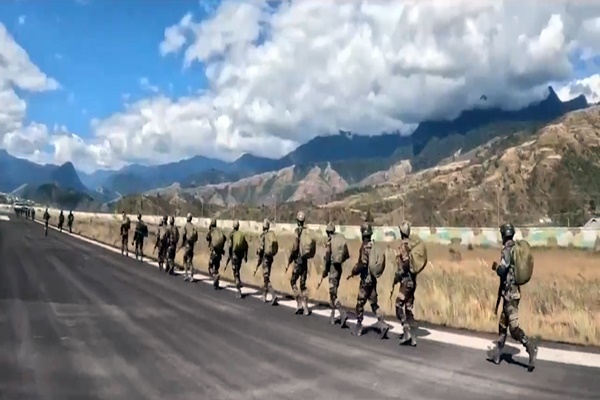
- 17 Nov 2024
In News:
- From November 10 to 18, 2024, the Indian Army is conducting a high-intensity tri-services exercise named PoorviPrahar in the forward areas of Arunachal Pradesh.
- The exercise aims to enhance the combat effectiveness and coordination between the Indian Army, Navy, and Air Force, focusing on integrated joint operations in the challenging mountainous terrain of the region.
About Exercise PoorviPrahar
Objective: The primary goal of Exercise PoorviPrahar is to hone the combat readiness and synergy across the three branches of the Indian Armed Forces. It is designed to improve their ability to conduct integrated joint operations, especially in the difficult terrain of Arunachal Pradesh, which is crucial due to the region's strategic location along India's eastern frontier.
Key Features of the Exercise:
- Multidomain Integration:The exercise involves land, air, and sea operations, demonstrating India's capability to conduct multi-domain operations. This showcases the Indian Armed Forces' preparedness to tackle threats across all three domains simultaneously.
- Advanced Military Platforms:
- Aircraft: Advanced fighter jets, reconnaissance aircraft.
- Helicopters: Including Chinook heavy-lift helicopters and Advanced Light Helicopters (ALH Rudra).
- Artillery: The exercise makes use of the M777 Ultra-Light Howitzers, which provide mobility and precision firepower in rugged terrains.
- Swarm Drones and Loitering Munitions: These cutting-edge technologies enable precision strikes and enhanced situational awareness, contributing to more flexible and adaptive operations.
- Technological Integration:
- The exercise integrates next-generation technologies like Swarm Drones, Loitering Munitions, and First-Person View (FPV) Drones. These tools enhance operational flexibility, improve situational awareness, and enable precision in strike capabilities, marking a significant advancement in India's military technology.
- Operational Coordination:A core component of the exercise is the development of a Common Operating Picture (COP). This system integrates real-time data from land, air, and sea operations, improving coordination and decision-making. The system relies on AI-driven analytics and satellite communications, enabling rapid information sharing and quicker response times.
- Tactical Focus on Mountain Warfare:Arunachal Pradesh, with its mountainous and rugged terrain, is the perfect setting for honing skills required for mountain warfare. The region’s proximity to India’s border with China makes it a critical area for India’s defense strategy.
Key Takeaways:
- Integrated Joint Operations: The exercise focuses on improving the coordination between the Army, Navy, and Air Force to execute seamless operations across land, air, and sea.
- Advanced Technology Integration: The exercise features the use of Swarm Drones, Loitering Munitions, and AI-driven systems to enhance precision, situational awareness, and overall operational flexibility.
- Mountain Warfare Expertise: Conducted in the mountainous terrain of Arunachal Pradesh, the exercise is crucial for preparing the Indian Armed Forces to operate effectively in such challenging landscapes.
- Strategic Posture: The exercise reaffirms India’s ability to defend its Eastern frontier and maintain a robust defense posture in the face of potential threats in the region.
Unified Complex Radio Antenna

- 17 Nov 2024
In News:
- India and Japan recently signed a Memorandum of Implementation (MoI) to co-develop the UNICORN (Unified Complex Radio Antenna) mast for deployment on Indian Navy ships. This pact marks a significant milestone as it is India's first military technology transfer agreement with Japan.
- The deal follows a 2015 agreement on the transfer of defense equipment and technology, further strengthening defense ties between the two countries.
- The UNICORN mast is a cutting-edge communication and radar system designed to enhance the stealth characteristics of naval vessels. This agreement is seen as an important step towards deepening India-Japan defense cooperation.
What is UNICORN?
The UNICORN mast is an advanced, integrated antenna system that combines several communication and radar components into a single conical structure or radome (a radar-absorbing dome). It is designed to reduce the radar cross-section (RCS) of ships, improving their stealth capabilities.
Key features of the UNICORN mast include:
- Integration of multiple antennas: It consolidates various antennas used for tactical data links, communications, and navigation systems (e.g., TACAN - Tactical Air Navigation System).
- Stealth enhancement: By reducing the number of exposed components and consolidating them into a single radome, the mast significantly lowers the ship’s radar signature, making it harder to detect.
- Improved performance: The mast design minimizes mutual interference between antennas, enhances maintainability, and increases lightning resistance.
- Space efficiency: It saves valuable below-deck space and reduces ship-building time by integrating multiple systems into one mast.
The UNICORN system is currently deployed on Mogami-class frigates of the Japan Maritime Self-Defence Force.
India-Japan Defense Cooperation
- 2015 Defense Technology Transfer Agreement: This pact established a framework for defense cooperation between India and Japan, paving the way for joint projects like the UNICORN mast.
- Bilateral Military Exercises:
- Veer Guardian 2023: A bilateral exercise conducted between the Japan Air Self Defence Force (JASDF) and the Indian Air Force (IAF), which deepened defense interoperability between the two nations.
- Tarang Shakti 2024: The first multilateral air exercise hosted by the Indian Air Force, with Japanese fighter aircraft participating.
- Andaman and Nicobar Islands Development: Japan has also provided financial aid for infrastructure development in India’s strategically located Andaman and Nicobar Islands, contributing to enhancing India’s maritime security in the region.
Red-Headed Vulture
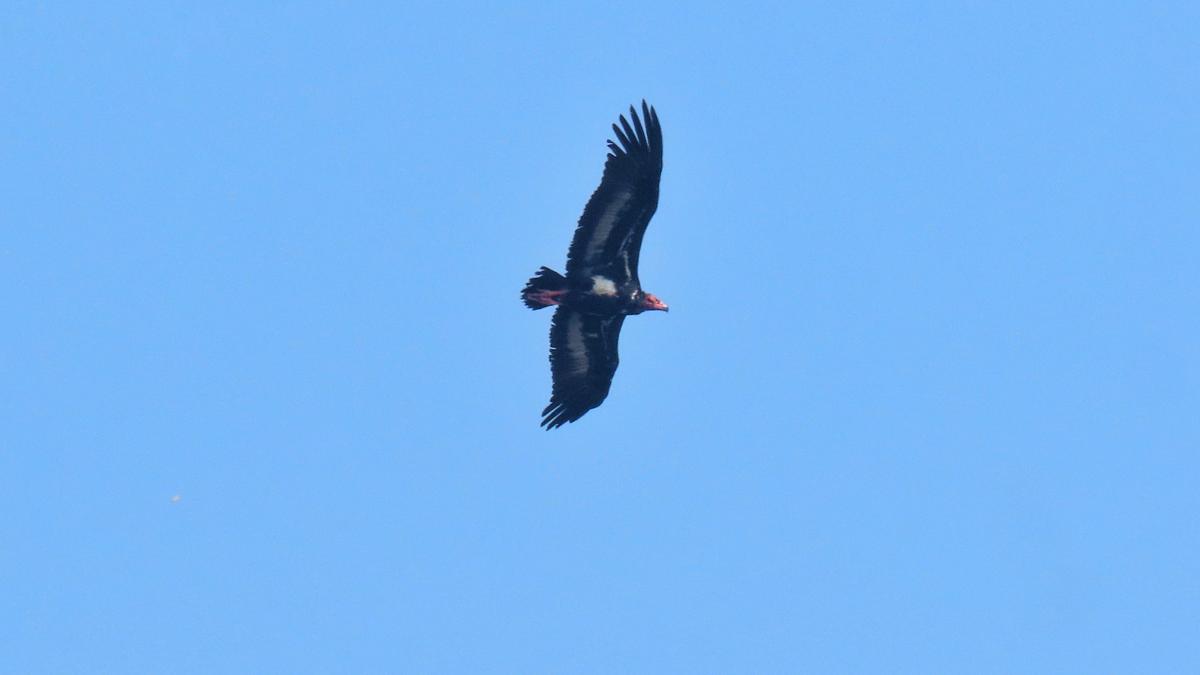
- 17 Nov 2024
In News:
- The Red-Headed Vulture, a critically endangered species, has been sighted for the first time in Kasaragod, Kerala, marking an important addition to the region’s avian biodiversity. This rare sighting occurred at Manhampothikunnu near Mavungal. Prior to this, the species was predominantly seen in the Wayanad region of Kerala.
- This discovery brings the total number of bird species recorded in Kasaragod to 407, showcasing the district's growing avian diversity.
About the Red-Headed Vulture:
- The Red-Headed Vulture (also known as the Asian King Vulture or Pondicherry Vulture) is one of the rarest and most critically endangered species of vultures in India. It is known for its distinctive scarlet red head and black body with a white patch on the abdomen.
- Physical Features: The bird is medium-sized, weighing around 5 kg, with a wingspan of up to 2.5 meters and a length of 80 cm. It is typically solitary, often found alone or with a mate.
- Distribution: Historically found in Central India, Nepal, Myanmar, Thailand, Vietnam, and parts of Kerala, Karnataka, and Tamil Nadu, the Red-Headed Vulture’s numbers have drastically declined in recent decades.
Conservation Status:
- IUCN Red List: The Red-Headed Vulture is classified as Critically Endangered.
- Wildlife Protection Act, 1972: It is listed under Schedule 1, offering it the highest level of legal protection.
- CITES: The species is also listed in Appendix II, indicating that it requires international conservation efforts to prevent it from becoming endangered.
Threats to Vultures:
- Diclofenac Poisoning: The significant decline in vulture populations in India, including the Red-Headed Vulture, is primarily due to the widespread use of diclofenac (a veterinary drug) to treat livestock. When vultures consume the carcasses of treated animals, they ingest the toxic drug, leading to kidney failure and death.
- Other threats include pesticide contamination, lead poisoning, habitat loss, and collisions with man-made structures like power lines and wind turbines.
Conservation Efforts in India:
- India has undertaken various efforts to protect vultures, including banning diclofenac in 2006 and expanding the ban to other harmful drugs like ketoprofen and aceclofenac in 2023.
- Vulture Conservation Breeding Centres (VCBCs): These centers are focused on captive breeding and reintroduction programs for vultures, helping to increase their populations. The Jatayu Conservation and Breeding Centre in Uttar Pradesh is one of the latest initiatives, set up to protect and rehabilitate vultures.
- Vulture Safe Zones have been created across India, providing safe habitats for vulture species to recover.
- Vulture Restaurant Initiative: In some regions, safe feeding centers (such as in Jharkhand) have been established, where vultures are provided uncontaminated carcasses, reducing their exposure to toxic substances.
- Legal Protection: Several species of vultures, including the Red-Headed Vulture, are protected under Schedule I of the Wildlife Protection Act, 1972, ensuring stringent legal measures against poaching and habitat destruction.
Global Conservation Efforts:
- India’s vulture conservation initiatives are part of a broader international effort under the SAVE (Saving Asia’s Vultures from Extinction) programme, which involves multiple regional and global organizations working to protect vulture species in South Asia.
Bali Jatra Cuttack Utsav 2024
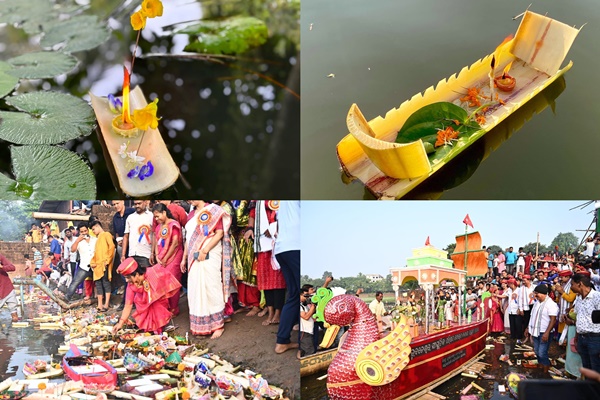
- 17 Nov 2024
In News:
- Bali Jatra 2024 is being held from November 15 to November 22 in Cuttack, Odisha.
- The festival celebrates Odisha’s ancient maritime history and its cultural and trade links with Southeast Asia.
- The event has gained international attention due to the participation of diplomats and cultural troupes from ASEAN, BIMSTEC, and Pacific Island countries.
Historical and Cultural Significance:
- Bali Jatra ("Voyage to Bali") commemorates the 2,000-year-old maritime trade routes between ancient Kalinga (modern-day Odisha) and Southeast Asia, including regions like Bali, Java, Sumatra, Borneo, Burma (Myanmar), and Sri Lanka.
- The festival honors the skills of Kalinga sailors who contributed to the prosperity of the region through trade, including commodities like pepper, cinnamon, cardamom, silk, camphor, gold, and jewelry.
- It highlights Odisha’s maritime legacy and the cultural exchanges between India and Southeast Asia, particularly the cultural influence of Odia merchants on Bali.
Commercial and Economic Aspects:
- Bali Jatra is Asia’s largest open-air trade fair, featuring over 2,500 stalls selling a variety of products including artisanal crafts, household items, and food.
- The event is a major commercial activity with business transactions estimated to exceed ?100 crore over the course of the festival.
- The festival provides an opportunity for both local and national traders to exhibit products at competitive prices.
Cultural Performances and International Participation:
- The festival includes daily cultural performances showcasing Odissi dance, Chhau dance, Bihu, Mahari, Gotipua, Sambalpuri, and Santali folk dances.
- This year, cultural troupes from countries like Indonesia, Thailand, and Sri Lanka have participated, enhancing the international profile of the festival.
- Diplomats, including Ambassadors, High Commissioners, and Heads of Mission from 14 countries attended the inaugural ceremony.
Historical Background of Bali Jatra:
- The festival is linked to Kartika Purnima, the full moon night of the month of Kartika, marking the annual migration of traders from Odisha to Southeast Asia.
- Traders used boats called Boitas to travel to distant lands, which is now symbolically represented in the festival.
- The event’s cultural significance extends to the recognition of Odisha’s historic maritime routes, with ports like Tamralipti, Manikpatna, Chelitalo, Palur, and Pithunda playing key roles in global trade from as early as the 4th century BC.
Kalinga's Maritime Influence:
- The Kalinga Empire (present-day Odisha) had significant influence over the Bay of Bengal, referred to as the Kalinga Sea.
- Kalinga’s dominance in maritime trade is reflected in Kalidasa's Raghuvamsa, where the King of Kalinga is called "Lord of the Sea."
- Kalinga's Boitas (ships) were instrumental in connecting India with the Southeast Asian archipelago, including Bali.
Cultural Linkages with Bali:
- Odisha's trade with Bali influenced the culture, religion, and architecture of the region.
- Balinese Hinduism today still reflects Indian influences, with worship of Hindu deities like Shiva, Vishnu, Brahma, and Ganesha.
- The MasakapankeTukad festival in Bali, similar to Bali Jatra in Odisha, is a tribute to the maritime ancestors of Bali and commemorates the long-standing cultural ties.
Recognition and Milestones:
- Bali Jatra 2022 achieved a Guinness World Record for creating the largest collection of origami sculptures.
- The festival has evolved from a traditional trade fair to an international cultural event that highlights Odisha’s historical role in global trade and cultural exchanges.
TarunerSwapno Scheme
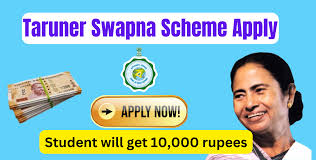
- 17 Nov 2024
In News:
Chief Minister Mamata Banerjee has ordered an inquiry after some intended beneficiaries of the ‘Taruner Swapna’ scheme, an initiative of the TMC government, alleged that they did not receive Rs 10,000 meant for the purchase of tablets (mobile device with a touchscreen display, rechargeable battery, and mobile operating system).
Overview:
- Aimed at bridging the digital divide by providing ?10,000 to Class 11 and 12 students in West Bengal for purchasing smartphones/tablets.
- In FY 2024-25, ?900 crore allocated for the scheme, targeting 16 lakh students.
- The main objective of the scheme is to provide scholarship to the students. So that the student can use their scholarship to buy a smartphone and tablet and can get education through online medium.
- This scheme will prove to be effective in making the future of the students bright and will also prove to be effective in strengthening them technically.
- Eligibility criteria for the scheme:
- Applicant must be a permanent resident of West Bengal State.
- The applicant should be a student.
- Students of 11th and 12th will be eligible for this scheme.
- The annual income of the family of the applicant student should not exceed Rs 2 lakh.
- Students with backlog are not eligible as this grant is for one-time only.
- This scheme will make the students technically strong and they will be able to improve their future with technology.
- Students of government/government-aided/sponsored schools and madrassas can avail assistance.
- TarunerSwapno Yojana will bridge the digital divide among students and facilitate modern education.
Europe’s Digital Euro
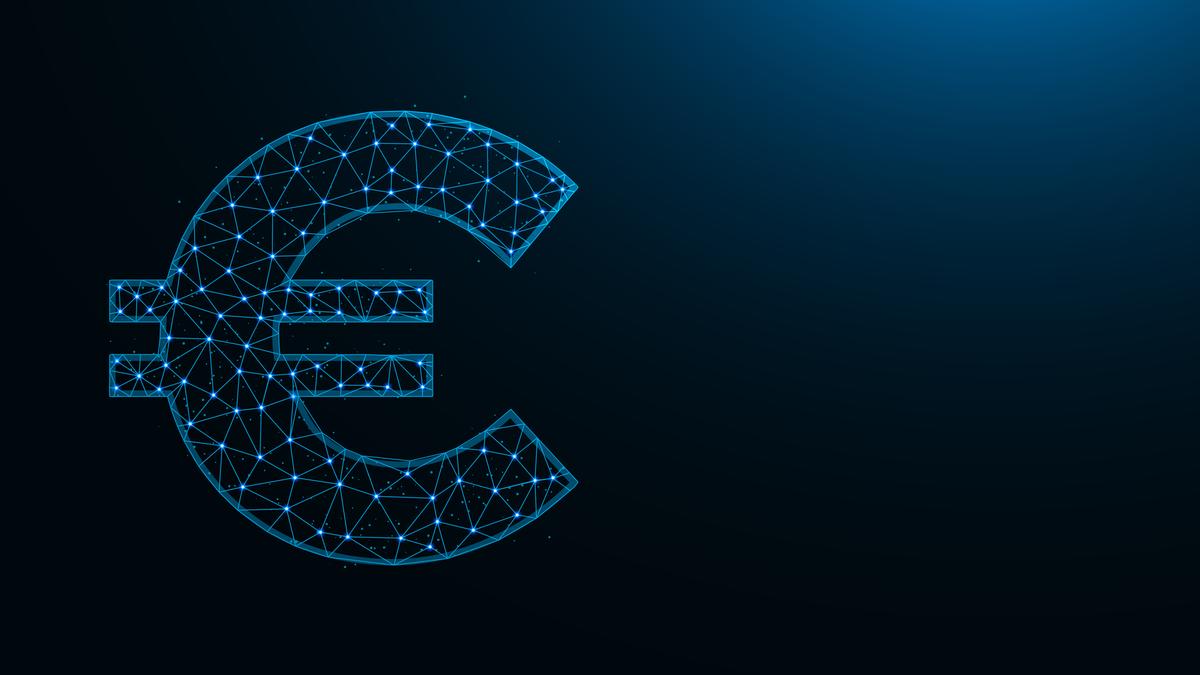
- 16 Nov 2024
In News:
The digital euro, a central bank digital currency (CBDC) being developed by the European Central Bank (ECB), aims to revolutionize Europe’s digital payment landscape. However, while the ECB has marketed it as a convenient, free, anonymous, and reliable alternative to existing cashless options like credit cards and mobile payment apps, the true purpose of the digital euro goes beyond these simplified claims.
Key Aspects of the Digital Euro
- Direct Issuance by the ECB: Unlike traditional digital payments that rely on intermediaries like banks or payment service providers, the digital euro is issued directly by the European Central Bank. This allows for peer-to-peer transactions without the need for third-party banks or payment gateways. It can be used for offline transactions, which is a major technical innovation that sets it apart from other digital currencies.
- A Digital Version of Cash: The digital euro is essentially a digital version of legal tender (cash), providing an alternative to cash in a world increasingly dominated by digital payments. Its key feature is direct payment between users, bypassing the traditional banking system. It aims to offer the same advantages as cash, such as anonymity, but with the convenience of digital transactions.
- Cost Reduction and Micro-Payments: The digital euro promises to lower transaction costs, especially for micro-payments that are currently prohibitively expensive using conventional bank transfers or digital services like PayPal. This cost efficiency is intended to enable new business models by lowering the friction in digital transactions, thus encouraging innovation in commerce.
The ECB’s Claims vs. the Real Motivation
While the ECB portrays the digital euro as a means to make payments easier, faster, and more secure, there is an underlying political and economic agenda that goes beyond improving consumer convenience.
- Sovereignty and Competition: One of the main drivers behind the digital euro is Europe’s desire to assert its digital sovereignty. The ECB positions the digital euro as a tool to strengthen the euro’s competitiveness against non-European payment providers, particularly those from the United States like PayPal, Apple Pay, and Google Pay. The EU is concerned that foreign companies may dominate the digital payment landscape, thereby reducing Europe's ability to control its own financial systems.
- This is a defensive measure to protect European financial interests. By creating a state-backed alternative to privately controlled digital payment systems, the EU aims to ensure that Europe does not become reliant on foreign corporations for essential services.
- Not About Citizens’ Convenience Alone: While the ECB frames the digital euro as a user-friendly solution for consumers, the real concern is about the control over digital currency. The digital euro offers a more centralized alternative compared to the decentralized nature of cryptocurrencies like Bitcoin. The ECB aims to harness the power of the state in regulating and controlling digital transactions, thus consolidating private property and ensuring the smooth functioning of Europe’s monetary policies.
- A Tool for Strengthening the Euro: The digital euro is also seen as part of Europe’s broader ambition to establish the euro as a dominant global currency. As the first fully-regulated digital currency issued by a central bank, it could position the euro to compete against other digital currencies, including the digital yuan or the U.S. dollar. The EU sees the digital euro as a way to expand its geopolitical influence by promoting its own currency as a global standard for digital payments.
Commemoration of Birsa Munda’s 150th Birth Anniversary
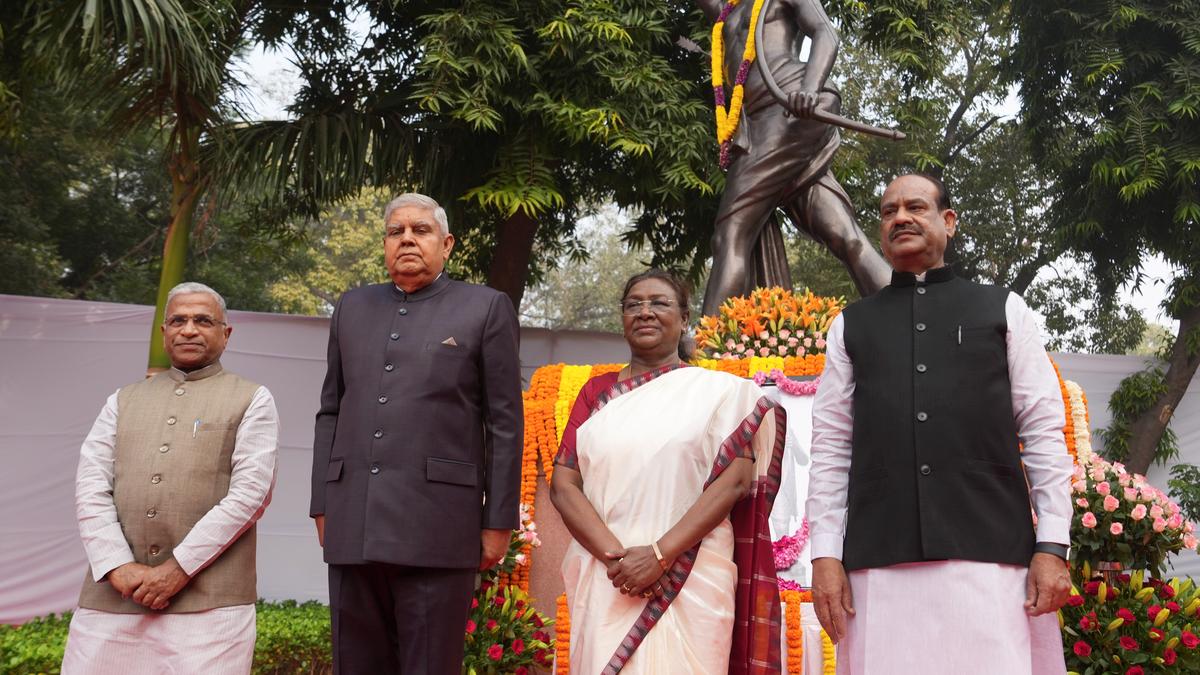
- 16 Nov 2024
In News:
On November 15, 2024, Prime Minister Narendra Modi launched a commemorative stamp and coin to mark the 150th birth anniversary of Birsa Munda, a prominent tribal freedom fighter and leader from Jharkhand.
Key Points about Birsa Munda:
- Iconic Tribal Leader: Birsa Munda, born in 1875, is often referred to as ‘Bhagwan’ (God) and ‘DhartiAaba’ (Father of the Earth) by the tribal communities. He is celebrated for his leadership in the fight against the exploitation of tribal people by both the British and non-tribal settlers.
- Ulgulan Movement: Birsa Munda led the Ulgulan (Great Tumult) against the alienation of land, forced labour, and the illegal appropriation of tribal land in the Chotanagpur Plateau. His efforts were critical in mobilizing tribal communities and challenging the colonial order.
- Religious and Social Reformer: He founded the Birsait faith, focusing on spiritual practices that emphasized prayer, worship of God, and abstaining from alcohol, fostering unity and resilience among tribal communities.
- Death and Legacy: Birsa Munda died in 1900 in British custody at the young age of 25. Despite his early death, his legacy lives on as a symbol of tribal pride and resistance.
- Janjatiya Gaurav Diwas: Since 2021, the Government of India observes November 15 as Janjatiya Gaurav Diwas (Tribal Pride Day) in honor of Birsa Munda's birth anniversary, recognizing the contributions of tribal communities and their role in India's history.
- Highlights of the 2024 Commemoration:
- Commemorative Stamp and Coin: To mark the 150th birth anniversary, the Prime Minister unveiled a commemorative stamp and coin in Bihar's Jamui district. This serves as a tribute to Munda's sacrifices for the country.
- Year-Long Celebrations: The 2024 event marks the beginning of year-long celebrations to commemorate Birsa Munda’s legacy, with a focus on tribal welfare and recognition of their historical contributions.
- Welfare Projects and Initiatives:
- Prime Minister Modi inaugurated and laid the foundation for tribal welfare projects worth over ?6,640 crore.
- The PM launched two tribal freedom fighter museums and tribal research institutes.
- 1.16 lakh homes were sanctioned under the Dharti Aba Janjati Gram Utkarsh Yojana.
- 25,000 homes for Particularly Vulnerable Tribal Groups (PVTGs) were approved under the Pradhan Mantri Janjati Adivasi Nyaya Maha Abhiyan (PM-JANMAN) scheme.
- The launch of 50 mobile medical units aims to improve healthcare access in tribal regions.
- 10 Eklavya Model Residential Schools (EMRS) were inaugurated to promote education for tribal students.
- DhartiAabaJanjatiya Gram Utkarsh Abhiyan:
- The DhartiAabaJanjatiya Gram Utkarsh Abhiyan aims to address gaps in social infrastructure, health, education, and livelihood in tribal-majority villages.
- The initiative is being implemented across 63,000 villages with the involvement of 17 ministries and departments.
- PM-JANMAN Scheme for PVTGs:
- Launched in November 2023, the PM-JANMAN initiative aims to uplift Particularly Vulnerable Tribal Groups (PVTGs) through various interventions like safe housing, clean drinking water, healthcare, education, and sustainable livelihoods. The scheme also supports Van Dhan Vikas Kendras for the trade of forest produce and solar-powered systems for households in tribal areas.
Partnerships for Accelerated Innovation and Research (PAIR)

- 16 Nov 2024
In News:
The Anusandhan National Research Foundation (ANRF) has launched the Partnerships for Accelerated Innovation and Research (PAIR) program to significantly boost research and innovation across Indian universities, especially those with limited research infrastructure. The program is designed to bring about a transformative change in India's academic research ecosystem, aligning with the broader goals of the National Education Policy (NEP) 2020.
Key Details:
- Launch Date: November 2024
- Ministry/Department: Department of Science and Technology (DST)
- Objective:
- To elevate research capabilities in universities that have limited resources by pairing them with well-established, top-tier institutions.
- To foster collaborations that can help these emerging universities enhance their research quality, drive innovation, and make significant, globally competitive research contributions.
- Operational Model: Hub-and-Spoke Framework
- Hub Institutions: These are well-established, top-tier institutions that will serve as mentors to less-researched universities. The hubs will be selected from:
- The top 25 institutions in the National Institutional Ranking Framework (NIRF).
- Institutions of National Importance ranked in the top 50 NIRF.
- Spoke Institutions: These are emerging universities or institutions with limited research infrastructure. These will include:
- Central and State Public Universities ranked within the top 200 NIRF Overall.
- Top 100 NIRF University/State Public Universities.
- Select NITs and IIITs.
- Hub Institutions: These are well-established, top-tier institutions that will serve as mentors to less-researched universities. The hubs will be selected from:
- Funding:
- The program has a budget allocation of up to ?100 crore per PAIR network.
- Distribution of Funds:
- 30% for the Hub institution.
- 70% for the Spoke institutions.
- Private Institutions serving as hubs will need to contribute 25% of their allocated budget.
- Mentorship & Research Focus:
- Hubs will provide mentorship to spoke institutions, guiding them in various aspects of research such as access to resources, advanced infrastructure, and best practices.
- The collaboration is expected to enhance research capabilities, foster innovation, and encourage the development of collaborative networks across institutions.
- Regional Diversity & Inclusion:
- The program ensures regional diversity, with at least one spoke institution located outside the hub's state.
- It also allows the inclusion of one promising university from Category III institutions that may not meet the eligibility criteria but show potential for growth in research.
- Phase-wise Rollout:
- The first phase will focus on institutions ranked within the top 25 NIRF and Institutions of National Importance.
- Future phases will expand the scope, allowing more universities and institutions to participate.
- Goals Aligned with NEP 2020:
- Fostering Research Excellence: By partnering top institutions with emerging ones, PAIR seeks to improve the quality of research in India’s higher education sector.
- Promoting Regional Diversity: Ensuring a geographically diverse set of institutions participate in the research ecosystem.
- Strengthening Innovation: Helping universities in less-researched areas to compete on an international level, particularly in cutting-edge and impactful research.
- Program Implementation:
- Prospective Program Directors from eligible Hub institutions are invited to apply online for the program at ANRF PAIR Application Portal.
About ANRF:
- ANRF was established under the ANRF Act 2023 as an apex body to provide strategic direction for scientific research in India.
- With the formation of ANRF, the Science and Engineering Research Board (SERB), previously established under an act of Parliament in 2008, has been subsumed into ANRF.
Global Maritime Conference
- 16 Nov 2024
In News:
In a bid to enhance India’s clout in the global merchant shipping sector, the government recently hosted a two-day global maritime conference – Sagarmanthan: The Great Oceans Dialogue.
Key Highlights:
- Purpose of the Conference:
- To enhance India's maritime influence and position India as a key player in the global maritime sector, especially in merchant shipping and maritime trade.
- To showcase India's ambitions in expanding its role in global maritime trade, governance, and collaboration.
- India's Maritime Ambitions:
- Despite being the most populous nation and one of the largest global economies, India’s maritime clout has been relatively lower than expected.
- The dialogue aims to shift global attention towards India's growing role and contributions to maritime trade and shipping.
- India's Maritime Growth:
- India contributed to 16% of global maritime growth in 2023 and is on track to become the third-largest global economy within three years.
- As India’s economic and geopolitical influence expands, maritime governance will become increasingly significant, necessitating deeper international collaborations in commerce, connectivity, and trade.
- Focus Areas of the Dialogue:
- Global Maritime Trade: India's expanding role in international shipping, trade routes, and maritime security.
- International Collaborations: Promoting deeper engagement in maritime governance and policy-making ecosystems.
- Human Well-being: Highlighting the role of maritime trade in supporting human welfare, particularly in the context of sustainable development and climate change.
- Significance for India:
- The conference serves as a platform to discuss India’s aspirations, policies, and presence in global maritime affairs.
- It is an opportunity to strengthen maritime relations and address issues of global relevance such as trade routes, shipping governance, and environmental sustainability
1st Bodoland Mohotsav
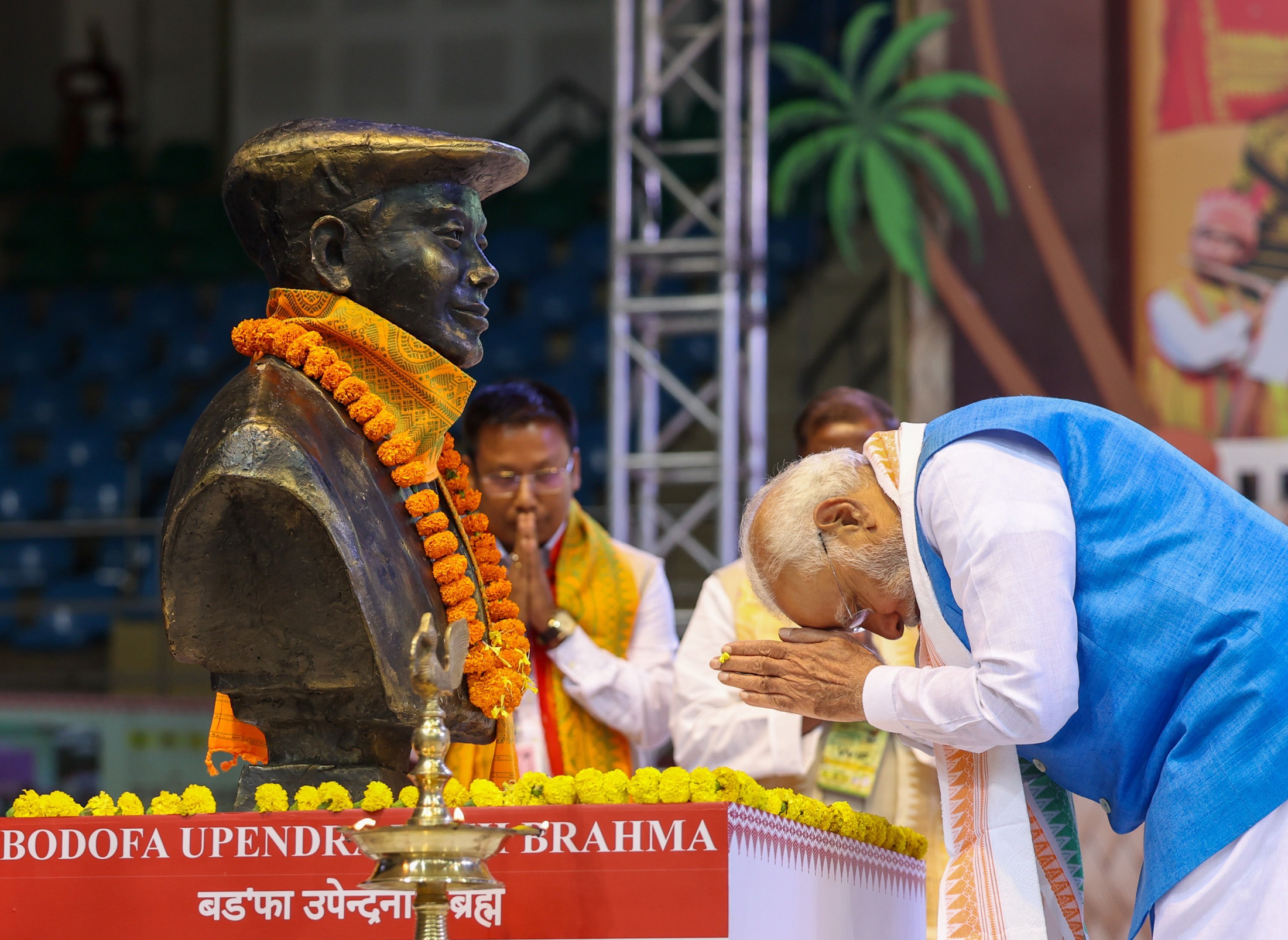
- 16 Nov 2024
In News:
- Recently, Prime Minister Narendra Modi inaugurated the 1st Bodoland Mohotsava two-day event focused on language, literature, and culture.
- Objective: Aims to promote peace, unity, and a vibrant Bodo society through cultural integration. The festival celebrates the rich Bodo culture and heritage.
Historical Context and Peace Initiatives:
- End of Violence: The event marks the end of 50 years of violence, following the Bodo Peace Accord (2020), which ended conflict in Bodoland and led to a path of peace and development.
- Peace Agreements: The Bodo Peace Accord served as a catalyst for other peace settlements, such as the KarbiAnglong Accord, Bru-Reang Accord, and NLFT-Tripura Accord.
Development in Bodoland Post-Peace Accord:
- Impact of the Peace Accord:
- Over 10,000 youth in Assam have renounced violence and joined the mainstream of development.
- Increased mutual trust between the people and the government.
- Economic Assistance:
- Rs 1,500 crore special package by the central government.
- Rs 700 crore spent on infrastructure development in education, health, and culture in Bodoland.
- Rs 5 lakh assistance for families affected by the Bodo conflict.
Government Support for Socio-Economic Development:
- Skill Development & SEED Mission:Focus on skilling, entrepreneurship, employment, and development through the SEED Mission for youth empowerment.
- Rehabilitation of Former Cadres:
- Over 4,000 former cadres of the National Democratic Front of Bodoland (NDFB) have been rehabilitated.
- Many youths have been recruited into Assam Police.
- Tourism & Employment:Growing tourism in Bodoland, with parks like Manas National Park and Raimona National Park, creating employment opportunities for youth.
Cultural Promotion:
- Bodo Culture and GI Tags:Promoting Bodo crafts like Aronnaye, Dokhona, Gamsa, etc., that have received Geographical Indication (GI) tags to preserve cultural identity.
- Bodoland Handloom Mission & Sericulture:Government efforts to promote sericulture and the Bodoland Handloom Mission to sustain Bodo weaving traditions.
- Literary Celebrations:
- Continuous Bodoland Literary Festival in Kokrajhar, enhancing the importance of Bodo literature and language.
- Celebration of Bodo Sahitya Sabha’s 73rd foundation day.
Key Government Initiatives for Development:
- Infrastructure Development:
- Rs 800 crore annually being spent by the Assam government for the development of Bodoland.
- Focus on healthcare, education, and employment.
- Medical Education:Expansion of medical colleges in Assam from 6 to 12, with plans for 12 more new colleges.
Operation Dronagiri
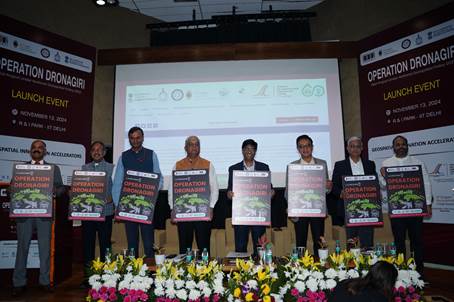
- 15 Nov 2024
In News:
- Recently, the Operation Dronagiri, launched under the National Geospatial Policy 2022 by the Department of Science and Technology (DST).
- Objective: It is a pilot project under India’s National Geospatial Policy 2022 aimed at showcasing the potential of geospatial technologies in sectors such as Agriculture, Livelihoods, and Logistics & Transport to improve quality of life and ease of doing business.
- Implementation:
- The first phase will cover five states: Uttar Pradesh, Haryana, Assam, Andhra Pradesh, and Maharashtra.
- Sectors Targeted: The focus will be on demonstrating the integration of geospatial data to solve real-world challenges in agriculture, transportation, and livelihoods.
National Geospatial Policy 2022
- Context: The National Geospatial Policy 2022 is aimed at liberalizing geospatial data and enabling widespread access and use of geospatial technologies across various sectors of governance, business, and development.
- Goals:
- Development of Geospatial Infrastructure: Promoting the creation of a robust infrastructure to make spatial data more accessible and usable.
- Geospatial Skill Development: Focus on creating a workforce proficient in geospatial technologies.
- Implementation of Standards: Establishing clear standards for geospatial data to ensure consistency and interoperability.
Role of Integrated Geospatial Data Sharing Interface (GDI)
- Launch: Alongside Operation Dronagiri, the Integrated Geospatial Data Sharing Interface (GDI) was also unveiled.
- Purpose: GDI is designed to facilitate seamless data sharing, access, and analysis of geospatial data.
- Key Features:
- Data Exchange: Enables smooth sharing of geospatial data for urban planning, disaster management, and environmental monitoring.
- Privacy and Security: Built with advanced data exchange protocols and privacy-preserving features to ensure secure data sharing.
- Collaboration: It will promote collaboration among stakeholders, including government agencies, industry, and startups, to unlock actionable insights for decision-making.
- Key Features:
Potential Applications of Geospatial Data
- Urban Planning: Assisting cities in designing efficient infrastructure.
- Disaster Management: Providing real-time data for better disaster response.
- Environmental Monitoring: Supporting initiatives for environmental protection and sustainability.
- Agriculture: Precision farming, crop monitoring, and improving supply chains.
- Logistics & Transport: Streamlining transportation networks, reducing traffic, and improving delivery systems.
Grand Challenge for Startups
- Objective: A Grand Challenge was announced as part of the initiative to support startups in developing Proofs of Concept (POCs) targeting specific problems in the focus sectors.
- Role of Startups: The challenge encourages innovation by early-stage and growth-stage startups in geospatial technology, offering mentorship, resources, and access to datasets.
- Geospatial Innovation Accelerators:
- The Geospatial Innovation Accelerators (GIAs) at prestigious institutions like IIT Kanpur, IIT Bombay, IIM Calcutta, and IIT Ropar will support this effort.
- Mentorship and Resources: These accelerators will provide the necessary support for startups to turn their innovations into scalable solutions.
Key Stakeholders and Operational Arms
- Geospatial Innovation Cell (DST): Responsible for overseeing the project’s implementation and execution.
- Navavishkar I-Hub Foundation (IITTNiF): Will manage the operational activities of Operation Dronagiri.
- Partnering Institutions: GIAs at IIT Kanpur, IIT Bombay, IIM Calcutta, and IIT Ropar will be the operational arms.
- Private Sector Involvement: Significant involvement of private sector companies, including startups, is crucial to ensuring the success and scalability of the project.
Impact and Significance
- Socioeconomic Benefits: The integration of geospatial data into agriculture, transport, and logistics will improve efficiency, reduce costs, and boost economic activity in critical sectors.
- Geospatial Innovation: The initiative marks a significant step towards making India a global leader in geospatial technology and positioning the country as a hub for innovative solutions using geospatial data.
- Government Engagement: The project will involve various government departments and corporates in a public-private partnership (PPP) model, similar to the successful implementation of the UPI payment system.
Mobility Arrangement for Talented Early-professionals Scheme (MATES)
- 15 Nov 2024
In News:
Australia has come up with a new scheme that allows talented young people from India to work in the country for some time.
What is the MATES Scheme?
- Full Name: Mobility Arrangement for Talented Early-professionals Scheme (MATES).
- Objective: To provide Indian university graduates and early-career professionals with an opportunity to live and work in Australia for up to two years.
- Establishment: The scheme is part of the Migration and Mobility Partnership Arrangement (MMPA) between Australia and India, signed on May 23, 2023.
- Launch Date: MATES will open for applicants in December 2024.
Eligibility Criteria
- Age: Applicants must be 30 years or younger at the time of application.
- Educational Qualifications: Must have graduated within the last two years from an eligible institution with a Bachelor’s degree or higher in one of the following fields:
- Renewable Energy
- Mining
- Engineering
- Information Communications Technology (ICT)
- Artificial Intelligence (AI)
- Financial Technology (FinTech)
- Agricultural Technology (AgriTech)
- English Proficiency: A minimum score of 6 overall in IELTS (or equivalent), with at least 5 in each module.
- Institutional Criteria: Graduates must be from the top 100 Indian universities as per the NIRF Ranking 2024 (e.g., Panjab University, Chandigarh University, Thapar Institute of Engineering, Lovely Professional University).
- Previous Participation: Applicants must not have previously participated in the MATES scheme.
Key Features of the MATES Scheme
- No Employer Sponsorship Required: Applicants are not required to have sponsorship from an Australian employer.
- Visa Duration: The visa allows a stay of up to 2 years in Australia, with multiple entries permitted.
- Dependents: Visa holders can bring dependents (spouse and children). Dependents will have work rights in Australia but will not count towards the annual cap.
- Visa Application Process:
- The visa will be granted through a ballot system (random selection).
- Application Fee: AUD 25.
- Shortlisted candidates will proceed to further formalities.
Program Features
- Targeted Sectors: MATES focuses on key sectors such as renewable energy, mining, engineering, ICT, AI, FinTech, and AgriTech, aligning with Australia’s demand for skilled professionals in these areas.
- Pilot Program: Initially, the scheme will offer 3,000 places per year for primary applicants.
- Work Flexibility: While the visa does not require applicants to work in their nominated field, it is designed to help young professionals expand their skills and network in Australia’s key industries.
Additional Benefits
- Career Development: Participants will gain international work experience, expanding their professional network and skills.
- Cultural Exchange: The scheme also promotes cultural exchange between India and Australia, fostering stronger bilateral relations.
- Pathway for Future Opportunities: Participants may apply for further temporary or permanent residence in Australia, provided they meet the eligibility requirements.
Impact and Significance
- Bilateral Cooperation: The MMPA, under which MATES is established, enhances migration and mobility between India and Australia while addressing concerns related to illegal migration.
- Youth Empowerment: The scheme offers young professionals a platform to develop their careers internationally, particularly in sectors of global relevance like AI, FinTech, and renewable energy.
- Skill Development: MATES aims to bridge skill gaps in Australia by attracting Indian professionals to key sectors where expertise is in high demand.
- Global Talent Mobility: This scheme supports the global mobility of young talent and strengthens the India-Australia economic and educational partnership.
Know Your Medicine (KYM) App
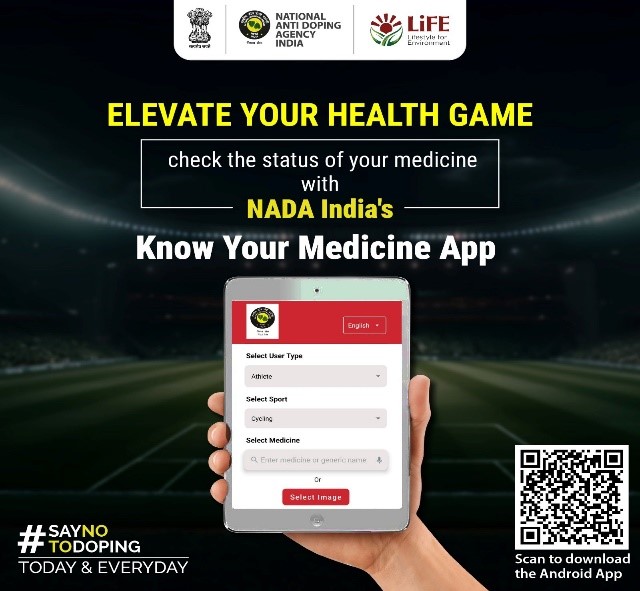
- 15 Nov 2024
In News:
Union Minister for Youth Affairs & Sports, Dr. Mansukh Mandaviya, has launched a nationwide appeal to strengthen the fight against doping in sports, urging athletes, coaches, and the entire sporting community to embrace the National Anti-Doping Agency (NADA) India's ‘Know Your Medicine (KYM)’ app.
Introduction to KYM App
- Launch: The app was launched by Dr. Mansukh Mandaviya, Union Minister for Youth Affairs and Sports, to combat doping in sports.
- Developer: National Anti-Doping Agency (NADA) India.
- Purpose: To prevent inadvertent doping by allowing athletes to check whether a medicine contains substances prohibited by the World Anti-Doping Agency (WADA).
Key Features of the KYM App
- Medicine Verification: The app enables athletes to verify if any medicine or its ingredients contain banned substances listed by WADA.
- Image and Audio Search: Unique search features help users easily search for specific sport-related information.
- Customizable Search: Users can select their sport category and receive relevant, sport-specific information.
- User-Friendly: Designed for athletes, coaches, and sports professionals to quickly verify medicines and ensure clean competition.
Importance of KYM App
- Supporting Clean Sports: The app promotes a fair and ethical sporting culture by reducing the risk of inadvertent doping.
- Integrity of Sports: Helps athletes avoid penalties or bans due to accidental doping, maintaining the integrity of the competition.
- Accessible Information: Provides easy access to information regarding medicines that may contain banned substances, which is crucial for athletes' health and careers.
NADA India's Mission
- Anti-Doping Awareness: The KYM app is part of NADA India’s broader initiative to educate athletes and raise awareness about the dangers of doping.
- Goal: To promote dope-free sports and ensure that athletes and coaches are equipped with the tools needed for compliance with anti-doping regulations.
NADA India: Background and Functions
- Established: NADA India was set up in November 2005 under the Societies Registration Act, 1860.
- Mission: To serve as the independent Anti-Doping Organization for India, aiming to create a doping-free sporting environment.
- Key Functions:
- Implementing Anti-Doping Code: Ensuring compliance with the World Anti-Doping Code among all sports organizations in India.
- Dope Testing Program: Coordinating a national dope testing program with stakeholders across various sports.
- Promoting Research and Education: Encouraging research on anti-doping and educating athletes on the importance of staying clean.
- Adopting Best Practices: Ensuring the implementation of high-quality standards for anti-doping programs.
Impact and Significance
- Preventing Doping: The KYM app helps prevent inadvertent doping incidents by providing athletes with the necessary tools to check their medicines.
- Supporting Athletes: It provides athletes with a reliable way to avoid banned substances in over-the-counter medications, thus safeguarding their careers.
- National and International Compliance: Supports India’s commitment to complying with international anti-doping norms, contributing to a global effort to maintain fairness in sports.
Operation Kawach
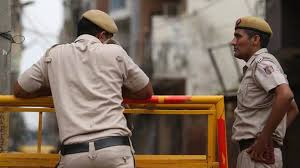
- 15 Nov 2024
In News:
The Delhi Police recently initiated Operation Kawach, arresting and detaining around 1,000 people in an attempt to crack down on various gangs and their operations in the wake of the recent incidents of shootings reported in the city.
Overview of Operation Kawach
- Objective: A crackdown on gang-related violence, drug trafficking, and other illegal activities like possession of firearms, banned drugs, and liquor.
- Agencies Involved:Delhi Police (Local Police, Special Cell, and Crime Branch)
- Duration: Initiated on November 12, 2024 (5 PM) and continued until November 13, 2024 (5 PM).
Key Details of the Operation
- Arrests and Detentions:
- Around 1,000 people detained.
- 486 people apprehended in Outer North Delhi (20% juveniles).
- Arrests made in Dwarka, Southwest, and North Delhi.
- Key Gangs Targeted:
- Associated with notorious gangs led by Lawrence Bishnoi, Neeraj Bawana, Kaushal Chaudhary, TilluTajpuria, Kala Jatheri, Manjeet Mahal, and Nandu gangs.
- Charges: Involvement in activities like:
- Possession of illegal firearms.
- Trafficking of liquor and banned drugs (NDPS Act).
- Theft and other criminal activities.
Significance of Operation Kawach
- Public Safety: Aimed at dismantling organized crime networks to enhance safety and reduce violence in Delhi.
- Impact on Gangs: Directly targets high-profile criminals, including those involved in gang wars and drug trafficking.
- Strategic Law Enforcement: Strengthens law enforcement capabilities, working in coordination across multiple police units.
Domestic Systemically Important Banks (D-SIBs)
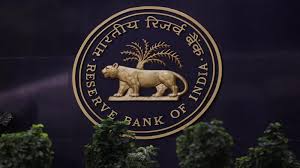
- 15 Nov 2024
In News:
The Reserve Bank of India (RBI) retained the State Bank of India, HDFC Bank and ICICI Bank as Domestic Systemically Important Banks (D-SIBs).
Overview of D-SIBs
- Definition: D-SIBs are banks that are 'Too Big to Fail' (TBTF) and their failure could significantly disrupt essential banking services, affecting the economy.
- RBI Classification: The Reserve Bank of India (RBI) has designated SBI, HDFC Bank, and ICICI Bank as D-SIBs.
- Bucketing System: These banks are classified into different buckets based on their systemic importance.
Importance of D-SIBs
- Systemic Importance: Banks are considered systemically important due to their:
- Size
- Cross-jurisdictional activities
- Complexity
- Interconnectedness with the economy
- Impact of Failure: Failure of a D-SIB could cause significant disruption in the banking system and economy, impacting services like payments, loans, etc.
Why D-SIBs are Created
- Risk of Disruption: The failure of a large bank can disrupt essential services and lead to a broader economic crisis.
- TBTF Perception: These banks are often perceived as Too Big to Fail, leading to an expectation of government support during crises. This creates moral hazard, encouraging riskier behavior.
Assessment and Selection of D-SIBs
- Two-Step Process:
- Step 1: Selection of banks based on their size, complexity, and interconnectedness. Only banks with systemic importance are assessed (e.g., banks with assets > 2% of GDP).
- Step 2: Calculation of systemic importance score based on a range of indicators. Banks above a certain threshold are classified as D-SIBs.
- Indicators: Size (measured by Basel III Leverage Ratio Exposure Measure), interconnectedness, substitutability, and complexity are key factors.
Bucket Allocation and Capital Requirements
- D-SIBs are assigned to five buckets based on their systemic importance score:
- Bucket 1: Lowest capital surcharge (e.g., ICICI Bank).
- Bucket 5: Highest capital surcharge.
- Additional Capital Requirements:
- SBI: Additional 0.80% CET1 (Common Equity Tier 1) on Risk-Weighted Assets (RWAs).
- HDFC Bank: Additional 0.40% CET1.
- ICICI Bank: Additional 0.20% CET1.
- The higher the bucket, the higher the capital surcharge.
Global Systemically Important Banks (G-SIBs)
- Global List: Identified by the Financial Stability Board (FSB) based on data from the previous year.
- 2023 G-SIB List includes banks like JP Morgan Chase, Bank of America, HSBC, etc.
- Capital Requirement for G-SIBs in India: Foreign G-SIBs with branch presence in India must meet additional CET1 requirements, proportional to their operations in India.
Key Terms
- Risk-Weighted Assets (RWAs): These are used to calculate the minimum capital a bank must hold. It accounts for the risk level of a bank’s assets.
- Common Equity Tier 1 (CET1): The highest quality of capital a bank can hold, primarily made up of common stock, to absorb losses in times of distress.
World Diabetes Day 2024
- 14 Nov 2024
In News:
- World Diabetes Day is observed on November 14th each year to raise awareness about diabetes, its prevention, and management.
- It was created by the International Diabetes Federation (IDF) and the World Health Organization (WHO).
- Significance: Commemorates the birthday of Sir Frederick Banting, who co-discovered insulin in 1922 alongside Charles Best.
- Theme (2024): "Access to Diabetes Care: Empowering Better Health for All".
History:
- Established in 1991 by the International Diabetes Federation (IDF) and World Health Organization (WHO).
- Recognized as a global observance by the UN in 2006.
- Activities: Awareness campaigns, health check-ups, educational seminars, and lighting of Blue Circle Monuments worldwide as a symbol of unity in the fight against diabetes.
Global Diabetes Data (2022):
- Total Diabetic Adults: 828 million globally.
- India's Share: 212 million (approximately 25% of global cases).
- Other Countries:
-
- China: 148 million.
- USA: 42 million.
- Pakistan: 36 million.
- Indonesia: 25 million.
- Brazil: 22 million.
Risk Factors for Diabetes:
- Global Factors: Obesity and poor diets are key contributors.
- India-Specific Factors: Dietary habits, lack of exercise, and socio-economic disparities contribute significantly to the high prevalence.
Untreated Cases:
- Global untreated cases (2022): 445 million (59% of diabetics globally).
- India untreated cases (2022): 133 million (64 million men, 69 million women).
- Complications: Untreated diabetes leads to severe health complications, including heart disease, kidney failure, and premature death.
Types of Diabetes:
- Diabetes Mellitus: The most common type of diabetes, characterized by issues with insulin production or its efficient use.
- Type 1 Diabetes (T1D):
- Autoimmune condition where the pancreas produces little or no insulin.
- Primarily affects children and young adults.
- Type 2 Diabetes (T2D):
- Insulin resistance combined with reduced insulin production.
- Often linked to lifestyle factors like obesity and physical inactivity.
- Gestational Diabetes:
- Occurs in pregnant women, leading to high blood sugar.
- Typically resolves after childbirth.
- Diabetes Insipidus:
- Imbalance of water regulation due to inadequate secretion or response to antidiuretic hormone (ADH).
- Leads to excessive urination and dehydration.
- Type 1 Diabetes (T1D):
Symptoms of Diabetes:
- Frequent urination.
- Excessive thirst and hunger.
- Unexplained weight loss.
- Blurred vision.
- Fatigue.
- Slow-healing wounds.
Role of Insulin in Managing Diabetes:
- Function of Insulin: A hormone produced by the pancreas that helps regulate blood glucose levels by facilitating glucose uptake into cells.
- In Type 1 Diabetes: Insulin injections or pumps are essential for survival.
- In Type 2 Diabetes: Insulin or oral medications may be prescribed alongside lifestyle modifications like diet and exercise.
Government Initiatives in India:
- National Programme for Prevention and Control of Cancer, Diabetes, Cardiovascular Diseases, and Stroke (NPCDCS): Focuses on awareness, early diagnosis, and management of diabetes.
- National Health Policy (2017): Aims to reduce premature deaths from non-communicable diseases by 25% by 2025.
- Ayushman Bharat – Health and Wellness Centres: Provides free screenings and consultations for diabetes and other non-communicable diseases.
- Eat Right Movement: Promotes healthier dietary habits to combat obesity and reduce diabetes risks.
- School Health Programs: Aims to educate children on healthy lifestyles to prevent the early onset of Type 2 diabetes.
Decline in African Elephant Population
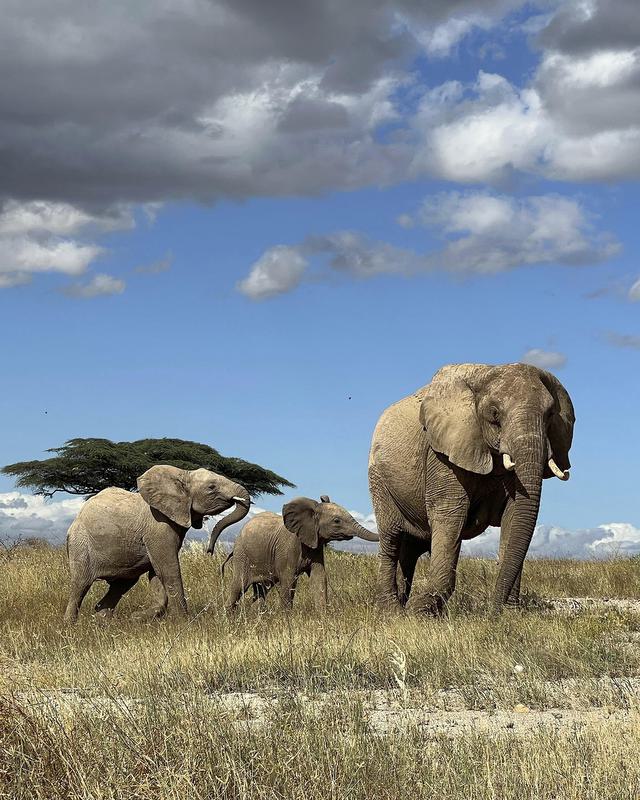
- 14 Nov 2024
In News:
- The population of African elephants has been declining rapidly, with data showing alarming drops across the African continent.
- Survey Period: The study covers population data from 475 sites in 37 countries over 52 years (1964-2016).
- Population Decrease:
- Savannah Elephants: A 70% decline on average across surveyed sites.
- Forest Elephants: A 90% decline on average across surveyed sites.
- Overall Impact: The study indicates a 77% average decline in elephant populations across both species.
Main Drivers of Decline
- Poaching: Illegal hunting for ivory and other body parts remains a major threat.
- Habitat Loss: Urbanization, agricultural expansion, and climate change are encroaching on the elephant’s natural habitats.
- Human-Elephant Conflict: Increased human settlements near elephant habitats lead to conflicts, further endangering elephant populations.
Species Overview
- Two Subspecies:
- Savannah Elephant (Loxodonta africana): Larger and more common, found in open savannas.
- Forest Elephant (Loxodonta cyclotis): Smaller and more elusive, found in dense rainforests.
- Conservation Status:
- Savannah Elephant: Endangered (IUCN).
- Forest Elephant: Critically Endangered (IUCN).
- CITES Listing: Both species are listed under CITES Appendix I, which bans international trade in endangered species.
Regional Impact
- Northern and Eastern Africa: These regions have seen drastic declines, particularly in the Sahel (Mali, Chad, Nigeria), where elephants have been extirpated (locally extinct) due to poaching and insufficient protection.
- Southern Africa: Positive Growth in some areas, particularly in Botswana, Zimbabwe, and Namibia, where elephant populations are growing due to strong conservation efforts.
Conservation Success
- Southern Africa: 42% of the surveyed sites showed increasing elephant populations, a testament to successful conservation strategies.
- Government and NGO Efforts: Successful population growth is often attributed to active management, including anti-poaching laws, protected areas, and conservation funding.
Elephant Behavior and Reproduction
- Social Structure: Elephants live in family units led by mature females, with strong social bonds.
- Low Sleep Time: Elephants sleep only 2 hours per day on average.
- Reproduction: They have a long gestation period of up to 2 years, and calves are cared for by mothers and allomothers (non-mother females).
Conservation Challenges
- Sustainability: Continued poaching and habitat destruction threaten to undo gains made in conservation.
- Fragmentation of Populations: With many elephants in isolated pockets, genetic diversity is declining, which could lead to long-term problems for species survival.
Jawaharlal Nehru Memorial Fund (JNMF)
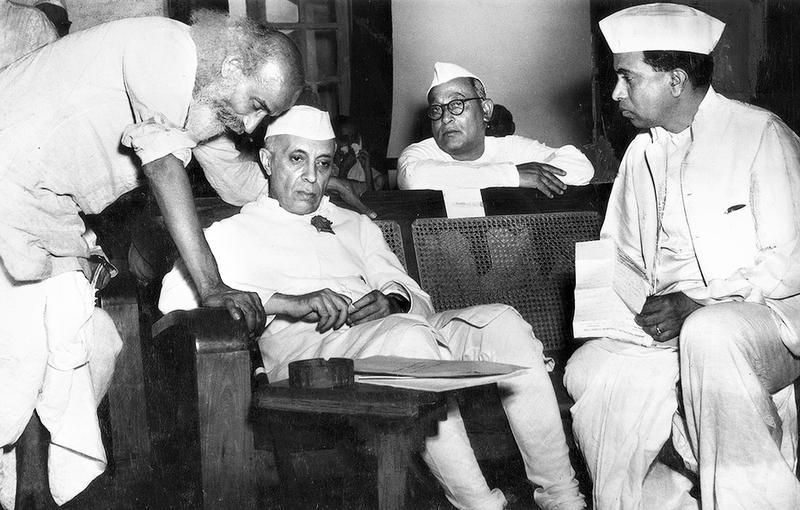
- 14 Nov 2024
In News:
Jawaharlal Nehru Memorial Fund to launch ‘Nehru Archive’ next year.
Nehru Archive Initiative
- Launch Date: The Nehru Archive will go online on November 14, 2025, coinciding with Jawaharlal Nehru's birth anniversary.
- Purpose: The archive will showcase less-known published and unpublished works of India’s first Prime Minister, Jawaharlal Nehru, including his speeches, letters to Chief Ministers, and other writings.
Archive Content
- Key Features:
- 100 volumes of The Selected Works of Jawaharlal Nehru.
- Letters to Chief Ministers (1947-1964), documenting Nehru's communication with state leadership.
- Nehru’s iconic books like:
-
-
- The Discovery of India
- Glimpses of World History
- Letters from a Father to His Daughter
- An Autobiography
- The Unity of India
- A Bunch of Old Letters
-
-
- Speeches from 1917 to 1964.
- Writings on Nehru by his contemporaries.
- Global archival material from international sources.
- Objective: The goal is to provide dynamic, continuously updated, open-ended access to Nehru’s work, making it the most important research source on Nehru.
Significance
- Educational and Intellectual Contribution: The archive will serve as a comprehensive, accessible source of information for students, scholars, and the general public to understand Nehru’s contributions to the making of modern India.
- Preservation of Legacy: It will preserve and promote Nehru’s intellectual legacy and his vision for India's development post-independence.
- Historical Importance: The archive will help contextualize Nehru’s leadership during critical periods of Indian history, including India’s independence, partition, and post-independence challenges.
Governance and Establishment of JNMF
- Founded: The Jawaharlal Nehru Memorial Fund (JNMF) was established in 1964 through a Deed of Declaration of Trust following a National Committee chaired by Dr. S. Radhakrishnan, then President of India.
- Purpose: To preserve and promote Nehru's legacy, especially his role in shaping modern India.
- Governance: The JNMF is governed by 14 trustees and is currently headed by Sonia Gandhi, the Chairperson of the Congress Parliamentary Party.
Sea Ranching Initiative off Vizhinjam Coast
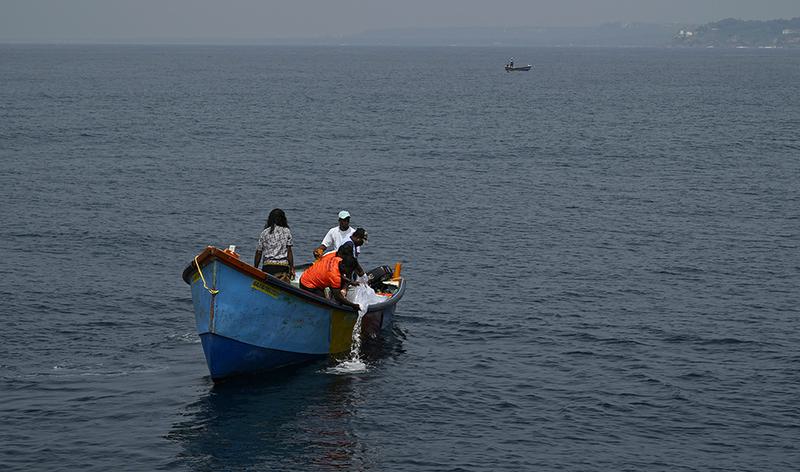
- 14 Nov 2024
In News:
- The State Fisheries Department in Kerala launched a sea ranching project by releasing 20,000 pompano (Trachinotus blochii) fingerlings off the Vizhinjam coast as part of the artificial reef project.
- Coordinates: The fingerlings were released near artificial reef modules placed 1.5 nautical miles off the coast.
- Follow-up to Artificial Reef Project: The release of fingerlings is a follow-up to the artificial reef project aimed at replenishing marine fishery resources and promoting sustainable fishing practices.
Project Details
- Fingerling Release: The first batch of 20,000 pompano was released as part of the broader initiative to release 10 lakh fingerlings (pompano and cobia) at 10 locations along the Thiruvananthapuram coast.
- Location and Quantity: At each location, 1 lakh fingerlings will be released, where artificial reefs have already been deployed under the Pradhan Mantri Matsya Sampada Yojana (PMMSY).
- Reef Design: Artificial reefs consist of 150 reef modules (triangular, flower, and pipe-shaped) created at 42 locations off 33 fishing villages in the Thiruvananthapuram district.
Objective and Benefits
- Marine Resource Replenishment: The primary aim is to replenish marine fishery resources in the region by enhancing biodiversity through the introduction of fingerlings.
- Sustainable Fishing: The project aims to promote sustainable fishing practices by supporting fish populations and ensuring long-term fishery health.
- Attraction of Fish Species: The artificial reefs have already attracted a variety of fish species, including tuna, trevally, and mackerel, enhancing the fishing ecosystem.
Implementation and Funding
- Scheme: The project is being implemented under the Pradhan Mantri Matsya Sampada Yojana (PMMSY), which focuses on sustainable fisheries development.
- Central Approval: The National Fisheries Development Board (NFDB) approved the ?3 crore funding for the initial phase in Thiruvananthapuram.
- Proposed Expansions:
- Phase II: A proposal for extending the artificial reef project to 96 villages in the districts of Kollam, Alappuzha, Ernakulam, and Thrissur with an estimated cost of ?29.76 crore.
- Phase III: A similar proposal for 96 villages in the northern districts of Malappuram, Kozhikode, Kannur, and Kasaragod with an estimated cost of ?25.82 crore.
Mission and Fingerlings Details
- Fingerlings:
- Pompano (Trachinotus blochii) and Cobia (Rachycentron canadum) fingerlings were reared at the Ayiramthengu fish farm.
- Each fingerling weighs between 8 to 10 grams.
- The release aims to stock marine areas with species that will contribute to biodiversity and fisheries sustainability.
Pradhan Mantri Matsya Sampada Yojana (PMMSY)
- Launched: PMMSY is a Centrally funded scheme under the Ministry of Fisheries, Animal Husbandry, and Dairying.
- Goal: The scheme focuses on sustainable fisheries development to enhance fisheries production, boost aquaculture, and promote responsible fishing practices.
- Funding: The scheme involves both Central and State Government funding for projects related to fisheries management, infrastructure development, and resource conservation.
Mission Fingerling
- Launched: 2017 by the Union Ministry of Agriculture and Farmers’ Welfare.
- Objective: To achieve the Blue Revolution by holistically developing and managing fisheries in India.
- Production Target: The mission aimed to increase fisheries production from 10.79 MMT (2014-15) to 15 MMT by 2020-21.
OECD Report on Indian Agricultural Policies
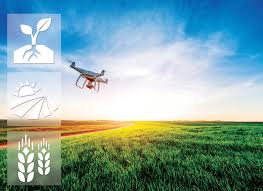
- 14 Nov 2024
In News:
- In 2023, the Organisation for Economic Co-operation and Development (OECD) revealed that Indian farmers faced the highest implicit taxation globally, amounting to USD 120 billion.
- Implicit Taxation: This taxation arises from government policies like export bans, duties, and price controls, aimed at lowering food prices for consumers but reducing the income of farmers.
- Export Restrictions: Key commodities affected include rice, sugar, onions, and de-oiled rice bran.
Impact on Indian Farmers
- Market Price Support (MPS):
- Negative MPS: In 2023, Indian agricultural policies resulted in a negative MPS of USD 110 billion.
- Farmers received lower prices than international market rates due to export bans and trade restrictions, impacting their income.
- Budgetary Support: Despite government subsidies and the Minimum Support Price (MSP) worth USD 10 billion, negative MPS outweighed positive support, leading to an overall loss for farmers.
- Farmer’s Share in Global Negative Support:
- India’s share of global negative price support in 2023 was 62.5%, a significant increase from 61% in 2000-02.
Global Agricultural Policy Trends
- Global Support: Total support for agriculture across 54 countries averaged USD 842 billion annually (2021-2023). However, there was a decline in support in 2022-23 from the pandemic-era peak.
- Challenges:
- Geopolitical Tensions (e.g., Russia-Ukraine war) and climate change are exacerbating global agricultural production and trade.
- Export Restrictions in various countries are distorting international agricultural markets.
- Farmer Protests across countries reflect the economic and social struggles of the farming community.
- Sustainability Issues: Global agricultural productivity growth is slowing, posing challenges to feeding a growing population sustainably.
India's Agricultural Policies
- Export Bans and Restrictions: These policies are intended to control domestic prices but undermine farmers’ income by lowering market prices for key agricultural products.
- Minimum Support Price (MSP): MSP is meant to protect farmers, but is often set below international market rates, leading to a negative price effect.
- Regulatory Constraints: Policies like the Essential Commodities Act (1955) and APMC Act (2003), though aimed at ensuring food security, often lead to price suppression for farmers.
- Price Depressing Policies: India's agricultural policies result in lower farm-gate prices due to price controls, government-set procurement prices, and lack of market access.
Negative Market Price Support (MPS)
- Historical Trends:
- From 2014-2016, India’s Producer Support Estimate (PSE) was -6.2%, driven mainly by negative MPS (-13.1%).
- The PSE measures the annual value of transfers to farmers, both from consumers and the government.
- Inefficiencies:
- Infrastructure Gaps: Poor infrastructure and high transaction costs lower the prices farmers receive.
- Inefficient Resource Allocation: Short-term subsidies for inputs (fertilizers, irrigation) don’t address long-term agricultural challenges like climate change and market access.
Government Support Programs
- Subsidies and Schemes:
- National Mission on Sustainable Agriculture (NMSA)
- Paramparagat Krishi Vikas Yojana (PKVY) for organic farming.
- Rashtriya Krishi Vikas Yojana (RKVY) to promote agricultural development.
- Digital Agriculture Mission and Unified Farmer Service Platform (UFSP) for modernizing agricultural practices.
- Sustainability Efforts:
- The government has introduced initiatives like AgriStack and Mission Organic Value Chain Development in the North East to enhance sustainable agricultural practices and reduce the negative impacts on farmers.
Global Context and Recommendations
- Environmental Public Goods Payments (EPGP): Only 0.3% of total producer support is dedicated to environmental sustainability, despite the growing need for climate-resilient agriculture.
- Sustainable Agricultural Practices: The OECD advocates for governments to tie producer support to sustainable farming practices, including the use of metrics like Total Factor Productivity (TFP) and Agri-Environmental Indicators (AEIs).
- TFP measures agricultural efficiency, while AEIs assess the environmental impacts of farming.
OECD Overview
- OECD Function: Founded in 1961, the OECD is an international organization of 38 countries that promotes prosperity, equality, and well-being through economic reports, data, and policy analysis.
- India’s Role: India has been an OECD Key Partner since 2007, engaging with the OECD on various policy issues, though it is not a member.
Global Nature Conservation Index (NCI) 2024
- 13 Nov 2024
In News:
India with an abysmal score of 45.5 (out of 100) has been ranked 176th in the Global Nature Conservation Index, 2024.
Key Highlights:
- India's Ranking:
- Ranked 176th out of 180 countries in the 2024 Global Nature Conservation Index (NCI).
- India is listed among the five worst performers, along with Kiribati (180), Turkey (179), Iraq (178), and Micronesia (177).
- Score: 45.5 out of 100, indicating significant conservation challenges.
- Key Factors Contributing to Low Rank:
- Inefficient land management practices.
- Rising threats to biodiversity, exacerbated by unsustainable development and climate change.
- Four Key Markers Assessed by the NCI:
- Land Management: Ineffective management leading to significant land conversion.
- Threats to Biodiversity: Habitat loss, fragmentation, and deforestation.
- Capacity and Governance: Need for stronger political will and better enforcement of conservation laws.
- Future Trends: Growing pressure from population density, climate change, and illegal wildlife trade.
- Sustainable Land Use Concerns:
- 53% of land has been converted for urban, industrial, and agricultural purposes.
- High use of pesticides and concerns over soil pollution.
- Sustainable nitrogen index of 0.77 indicates significant risks to soil health.
- Marine Conservation Issues:
- Only 0.2% of India’s national waterways are under protected areas, with no protected areas within its Exclusive Economic Zone (EEZ).
- Significant improvements needed in marine conservation despite 7.5% of terrestrial areas being protected.
- Deforestation and Habitat Loss:
- 23,300 sq. km of tree cover lost between 2001-2019 due to deforestation.
- Habitat fragmentation from agriculture, urbanization, and infrastructure development.
- Impact of climate change on sensitive ecosystems like alpine regions and coral reefs.
- Biodiversity Decline:
- Despite 40% of marine species and 65% of terrestrial species being within Protected Areas (PAs), many species continue to face population decline.
- 67.5% of marine species and 46.9% of terrestrial species are still experiencing population declines.
- Illegal Wildlife Trade:
- India is the fourth-largest illegal wildlife trading nation globally, with an estimated annual trade value of £15 billion.
- The NCI emphasizes the need for stronger enforcement and international cooperation to combat wildlife trafficking.
- Ecological Wealth Under Threat:
- India’s high population density (with a population that has doubled since the late 1970s) continues to put pressure on its ecological wealth.
- The country faces significant biodiversity challenges due to overpopulation and unsustainable development.
- Recommendations and Optimism:
- The NCI stresses the need for strong political will and commitment to sustainable development.
- India can improve its rank by strengthening conservation laws, improving governance, and securing funding for environmental initiatives.
- The NCI remains optimistic about India’s potential to address its conservation challenges and achieve more sustainable outcomes in the future.
- About the Nature Conservation Index (NCI):
- Developed by: Goldman Sonnenfeldt School of Sustainability and Climate Change (Ben-Gurion University) and BioDB.com (a biodiversity database).
- Purpose: Evaluates the conservation efforts of countries, using a data-driven approach to balance conservation and development.
- Key Focus Areas: Land management, biodiversity threats, governance, and future sustainability trends.
RBI's New Framework for Reclassification of FPI to FDI
- 13 Nov 2024
In News:
The Reserve Bank of India (RBI) directed foreign portfolio investors (FPIs) to obtain necessary approvals from the government and concurrence from the investee companies when their equity holdings go beyond the prescribed limits and they reclassify the holdings as foreign direct investment (FDI).
- Approval Requirement:
- FPIs (Foreign Portfolio Investors) must obtain necessary government approvals when reclassifying their foreign portfolio investments (FPIs) into Foreign Direct Investment (FDI).
- Approvals are mandatory, including those related to investments from countries sharing a land border with India.
- Investment Limits:
- According to FEMA (NDI) Rules, 2019, an FPI’s investment in an Indian company should not exceed 10% of the total paid-up equity capital (on a fully diluted basis).
- If the FPI exceeds this limit, it has 5 trading days from the settlement of trades to either divest or reclassify the excess holdings as FDI.
- Restrictions on Reclassification:
- Reclassification to FDI is not allowed in sectors where FDI is prohibited.
- FPIs must ensure compliance with FDI norms, such as entry routes, sectoral caps, investment limits, pricing guidelines, and other related conditions.
- Concurrence from Investee Companies:
- The FPI must obtain the concurrence of the investee company for reclassifying the investment into FDI.
- This ensures that the company adheres to conditions related to prohibited sectors, sectoral caps, and government approvals.
- Reclassification Procedure:
- The FPI must clearly state its intent to reclassify the investment to FDI and provide the necessary approvals and concurrence to its custodian.
- The custodian is responsible for freezing the FPI's purchase transactions in the investee company’s equity instruments until the reclassification is complete.
- Regulatory Adherence:
- The reclassification must follow the relevant provisions for FDI, including compliance with the Foreign Exchange Management Act (FEMA) and FDI guidelines.
India’s Vision of ‘Adaptive Defence’

- 13 Nov 2024
In News:
- Defence Minister Shri Rajnath Singh introduced the concept of ‘Adaptive Defence’ at the inaugural Delhi Defence Dialogue (DDD).
- Adaptive Defence aims to prepare India's military for the rapidly changing landscape of modern warfare, with evolving threats and technologies shaping global security.
Key Aspects of Adaptive Defence:
- Strategic Approach:
- Adaptive Defence is an evolving strategy where military and defence systems continuously adjust to emerging threats, focusing on proactive preparedness rather than reactive responses.
- It is based on anticipating future threats, fostering flexibility, resilience, and agility in both strategic and tactical responses.
- Core Elements:
- Situational Awareness: The ability to understand and respond to dynamic, often unpredictable environments.
- Flexibility & Agility: At both the strategic and tactical levels to ensure swift and effective responses.
- Resilience: The capacity to recover and adapt quickly to unforeseen circumstances.
- Integration with Emerging Technologies: Emphasis on adopting cutting-edge technologies like AI, drones, and cybersecurity to stay ahead of adversaries.
The Changing Nature of Warfare:
- Grey Zone & Hybrid Warfare:
- Modern conflicts now often occur in the grey zone and involve hybrid warfare, blending traditional and non-traditional threats like cyber-attacks, terrorism, and psychological warfare.
- These new threats demand continuous adaptation in strategies, doctrines, and military operations.
- Technological Transformation:
- Drones and swarm technologies are reshaping warfare. India aspires to become a global hub for drones, leveraging these technologies for both economic and military growth.
- The increasing significance of Artificial Intelligence (AI), cyber capabilities, and quantum technologies in defence highlights the need for international collaboration in research and innovation.
- Psychological Warfare:
- The rise of information overload and psychological warfare challenges traditional defence paradigms. Manipulation of information to influence public opinion and disrupt decision-making processes is now a key threat.
Government Initiatives for Adaptive Defence:
- Institutional Strengthening:
- Establishment of the Chief of Defence Staff (CDS) and initiatives to enhance jointness among the three armed services (Army, Navy, Air Force) to create a unified strategic force.
- Reform of training curricula and emphasis on integrated operations to ensure readiness for new-age warfare.
- Focus on Self-Reliance:
- Strengthening the indigenous defence sector through initiatives like Make in India and the Aatmanirbhar Bharat campaign.
- Increasing foreign direct investment (FDI) in defence and promoting defence exports, with India currently exporting to over 100 nations.
- Drone Hub Vision:
- India aims to become the world’s drone hub, supporting R&D and fostering innovation to develop reliable certification mechanisms and enhance Indian intellectual property in the drone sector.
- Programs like iDEX (Innovations for Defence Excellence) and ADITI are rewarding innovation and driving India's defence sector towards greater self-sufficiency.
- Technology and Innovation:
- Focus on cybersecurity, AI, and quantum technologies to develop solutions that address both national and global security challenges.
- India is also working on Theaterisation, integrating the three services into a unified force structure for enhanced coordination and joint operations.
- Defence Acquisition and Export:
- Introduction of the Defence Acquisition Procedure 2020, establishment of Defence Industrial Corridors in Uttar Pradesh and Tamil Nadu, and a Positive Indigenisation List to boost self-reliance.
- India is actively increasing defence exports, aiming for Rs 50,000 crore worth of exports by 2029, with key export destinations including the USA, France, and Armenia.
Strategic Vision for the Future:
- Collaborative Approach:
- Given the interconnectedness of global security, the defence minister emphasized the importance of a collaborative approach in dealing with transnational threats.
- Cross-border issues, cyberspace threats, and the potential of quantum and nanotechnologies demand the sharing of knowledge and strategies across borders.
- Joint Military Vision:
- Jointness in defence strategy should go beyond national borders and should involve international cooperation in response to global security challenges.
- The need for interconnected solutions in the face of transnational threats underscores the importance of multilateral cooperation.
Sudden Resurgence of H5N1 in Cambodia

- 13 Nov 2024
In News:
- Cambodia saw a resurgence of H5N1 avian influenza cases after over 10 years of no human infections.
- From February 2023 to August 2024, 16 human cases were reported, with 3 deaths caused by the A/H5 clade 2.3.2.1c virus.
- Notably, 14 of these cases were caused by a novel reassortant virus, involving a mixture of clade 2.3.2.1c and clade 2.3.4.4b gene segments.
Key Points:
- Reassortment of the Virus:
- The reassortment between clades 2.3.2.1c (Southeast Asia) and 2.3.4.4b (global spread) has created a new strain.
- This reassortant virus is responsible for the second wave of infections in humans, starting in October 2023.
- Zoonotic Transmission:
- Investigations confirmed that direct contact with sick poultry or bird droppings was the primary source of human infections.
- There have been no reported cases of human-to-human transmission.
- The novel reassortant virus appears to have replaced the 2.3.2.1c strain in Cambodian poultry.
- Geographic Spread and Spillovers:
- Clade 2.3.2.1c was first reported in Cambodian poultry in March 2014. It continued to circulate in both poultry and wild birds.
- Clade 2.3.4.4b viruses began circulating in Cambodian live bird markets by 2021, co-existing with clade 2.3.2.1c.
- There were two key spillovers to humans:
- The first spillover in February 2023, associated with clade 2.3.2.1c, involved two related individuals, with one death.
- The second spillover, beginning in October 2023, involved the novel reassortant virus.
- Genetic Analysis and Mutation Concerns:
- Genetic sequencing showed significant changes in the hemagglutinin (HA) gene of viruses from human cases, indicating a shift from older local strains to newer sublineages.
- The PB2 627K mutation in the novel reassortant is concerning, as it is linked to increased mammalian adaptation and the potential for airborne transmission, particularly in mammals like ferrets.
- This mutation raises concerns about the virus’s ability to adapt to humans or other mammals.
- Environmental and Epidemiological Factors:
- The reassortment is believed to have been facilitated by:
- High-density poultry farming.
- Wild bird migration.
- Cross-border poultry trade in Southeast Asia.
- These factors heighten the risk of zoonotic transmission, emphasizing the need for continued vigilance in the region.
- The reassortment is believed to have been facilitated by:
- Surveillance and Response:
- One Health investigations linked human cases to infected poultry, highlighting the importance of rapid response through whole genome sequencing.
- The ongoing surveillance is critical, as the novel reassortant strain has already replaced clade 2.3.2.1c in Cambodian poultry.
- Public Health Recommendations:
- There is an urgent need to strengthen sustained surveillance of avian influenza in both poultry and wild birds, particularly in Southeast Asia.
- Public health strategies should focus on:
- Reducing human exposure to infected poultry.
- Promoting safe poultry handling practices.
- Encouraging early healthcare-seeking behavior in individuals with potential symptoms.
Accessibility for Disabled Persons

- 13 Nov 2024
In News:
Recently, the Supreme Court of India delivered a significant ruling affirming that the right of persons with disabilities (PwDs) to access environments, services, and opportunities is a fundamental human right. The judgment was made in the case of RajiveRaturi vs. Union of India &Ors. and is based on a report submitted by the Centre for Disability Studies (CDS) at NALSAR University of Law.
Key Points of the Judgment:
- Social Model of Disability:
- The Court upheld the social model of disability, which focuses on societal changes to ensure the full inclusion and participation of PwDs.
- The model emphasizes removing social barriers and creating an inclusive environment that accommodates all disabilities.
- Challenges Faced by PwDs: The ruling highlighted various challenges faced by PwDs, as identified in the CDS NALSAR report:
- Accessibility Barriers: Significant gaps exist in accessibility measures across public spaces such as courts, prisons, schools, and public transport.
- Intersectionality & Compounded Discrimination: PwDs often face multiple layers of discrimination, such as caste, gender, and socio-economic status, which compound their marginalization.
- Inconsistent Legal Framework: The RPwD Act (2016) mandates mandatory compliance for accessibility standards, but Rule 15 under RPwD Rules (2017) only offers self-regulatory guidelines, which the Court found insufficient.
- Court's Analysis of Rule 15:
- The Court declared Rule 15(1) of the RPwD Rules, 2017, as ultra vires, meaning it is inconsistent with the mandatory compliance intended by the RPwD Act.
- The Court stressed the need for stronger legal and regulatory enforcement to ensure access for PwDs.
- Principles of Accessibility: The Court outlined several essential principles for achieving accessibility:
- Universal Design: Environments and services should be universally accessible to all, including PwDs.
- Comprehensive Inclusion: All types of disabilities, both visible and invisible, should be addressed.
- Assistive Technology Integration: Using technology to support PwDs in daily activities.
- Stakeholder Consultation: PwDs and disability advocacy groups must be consulted in planning and designing accessible spaces.
- Two-Pronged Approach:
- The Court recommended a two-pronged approach:
- Ensure accessibility in existing infrastructure: Modify and update current institutions and services to become accessible.
- Design future infrastructure with accessibility in mind: Plan and build new spaces and services that are inclusive from the start.
- The Court recommended a two-pronged approach:
Legal and Policy Framework:
- Rights of Persons with Disabilities (RPwD) Act, 2016:
- The RPwD Act mandates various accessibility standards and provisions to protect and promote the rights of PwDs, in alignment with India’s obligations under the United Nations Convention on the Rights of Persons with Disabilities (UNCRPD), which India ratified in 2007.
- The Act defines a person with a benchmark disability as someone with at least 40% of a specified disability.
- International Obligations:
- The ruling reaffirmed the importance of Article 9 of the UNCRPD, which emphasizes the right of PwDs to access the physical environment, transport, and information and communication technologies.
- Government Initiatives: The judgment highlights several initiatives aimed at improving accessibility:
- Accessible India Campaign (Sugamya Bharat Abhiyan): A nationwide effort to make public spaces and services accessible to PwDs.
- Assistance for Aids and Appliances: Government schemes to provide PwDs with necessary aids and appliances.
- Unique Disability Identification Portal: A platform for PwDs to register and obtain a disability certificate.
Notable Judicial Precedents:
The Court referred to several previous rulings that recognized the right to accessibility:
- State of Himachal Pradesh v. Umed Ram Sharma (1986): The Court included the right to accessibility under the Right to Life (Article 21) of the Constitution.
- Disabled Rights Group v. Union of India (2017): The Court directed that educational institutions ensure reserved seats for PwDs.
Nano-Coating Technology for Fertilizer Efficiency

- 12 Nov 2024
In News:
A mechanically stable, biodegradable, hydrophobic nanocoating material can enhance the nutrient use efficiency of chemical fertilizers by tuning them for slow release, thereby limiting their interaction with the rhizosphere soil, water and microbes.
Development of Slow-Release Fertilizers:
- A biodegradable, hydrophobic nanocoating has been developed to enhance the nutrient use efficiency of chemical fertilizers.
- The nanocoating allows for slow release of nutrients, thus limiting excessive interaction with soil, water, and microbes, and optimizing fertilizer usage.
Coating Composition:
- The coating is made from nanoclay-reinforced binary carbohydrates, primarily chitosan (a biopolymer from chitin) and lignin (a plant-based polymer).
- These materials are low-cost, naturally derived, and eco-friendly, ensuring sustainability and reducing the environmental impact of fertilizer use.
Technological Innovation:
- The coating process involves using a drum rotor method to uniformly coat fertilizers, improving their efficiency.
- The tuning of hydrophobicity in the nanocoating alters the release kinetics of fertilizers, ensuring that nutrients are released in accordance with the crop’s nutrient uptake needs.
Sustainability and Biodegradability:
- The nanocoating is biodegradable, which ensures that it does not harm the environment post-application, unlike conventional chemical fertilizers that may lead to soil degradation and water pollution.
- Life cycle assessment confirms the product's long-term sustainability compared to traditional fertilizers.
Enhanced Crop Productivity:
- The slow-release coating enables a reduced fertilizer dose, while maintaining or even increasing crop yields, particularly for staple crops like rice and wheat.
- This technology facilitates higher agricultural output with fewer inputs, contributing to food security.
Industrial Viability:
- The mechanical stability of the coated fertilizers ensures they can withstand transportation and handling, making them suitable for large-scale industrial application.
- The rotary drum system used for coating ensures uniform application and superior mechanical performance, ensuring that the fertilizers are not damaged during the supply chain process.
Economic Benefits:
- The use of slow-release fertilizers can reduce overall fertilizer costs for farmers while enhancing yields, leading to improved socio-economic conditions for farmers.
- The technology holds potential for economic growth by boosting agricultural productivity and reducing the financial burden on farmers for chemical fertilizer inputs.
Global Relevance:
- The research is significant in the context of global sustainable development goals, aiming to reduce the over-reliance on conventional chemical fertilizers that contribute to soil degradation, water contamination, and greenhouse gas emissions.
Research Collaboration:
- This breakthrough was achieved by scientists from the Institute of Nano Science and Technology (INST), Mohali, in collaboration with the Department of Science and Technology (DST).
- The findings were published in the peer-reviewed journal Environmental Science: Nano, highlighting its scientific validation.
3rd Indian Space Conclave
- 12 Nov 2024
In News:
- The 3rd Indian Space Conclave, held in New Delhi, was a significant event for India's growing role in global space exploration and strategic partnerships.
- Organized by the Indian Space Association (ISPA), the conclave brought together key stakeholders from the government, industry, academia, and space agencies to discuss India’s space ambitions and the transformative role of space technologies.
Key Highlights:
Satcom as a Transformative Force for Digital India
- Emphasis on Satellite Communication (Satcom) is more than a mere tool—it's a transformative force driving Digital India by connecting every household, village, and remote area of the country.
- Satcom has a wide array of applications that extend across essential sectors such as telecommunications, disaster management, healthcare, education, and agriculture, particularly in underserved regions.
Indo-EU Space Collaboration
- The event also showcased India’s growing space partnerships, particularly with the European Union (EU). The EU Ambassador recognized India as a dynamic space power and highlighted shared goals in Earth observation, space security, and human spaceflight.
- Proposed joint initiatives include training programs, collaborative research, and satellite missions, such as the Proba-3 satellite launch by ISRO, focusing on observing the Sun.
- India’s trustworthiness as a partner in space was underscored by its role in the successful launch of the Proba-1 and Proba-2 missions for the EU, with Proba-3 marking India’s third contribution to EU space exploration.
Space Startups and Innovation
- The rise of space-focused startups in India, spurred by the 2020 space sector reforms, was another key highlight. India now has over 300 space startups, contributing to both economic growth and innovation in the space industry.
- These reforms have helped curb brain drain, with many talented Indian professionals returning from global agencies like NASA to join the expanding Indian space ecosystem.
India’s Long-Term Space Goals
- The Indian space program has ambitious long-term goals, including:
- Gaganyaan, India’s human spaceflight mission.
- A crewed lunar landing by 2040.
- The establishment of an Indian space station by 2035.
- Plans for space tourism by 2040.
- These initiatives demonstrate India’s commitment to becoming a global leader in space exploration and technological innovation.
Space Sector Reforms (2020)
- The Space Sector Reforms 2020 were designed to increase the participation of private players in India’s space activities. The creation of agencies like the Indian National Space Promotion and Authorization Center (IN-SPACe) and the strengthening of New Space India Limited (NSIL) have been pivotal in boosting India’s global space market share.
- IN-SPACe serves as an autonomous body fostering industry, academia, and startups, while NSIL handles commercial activities and promotes high-tech space-related ventures.
India's First Mars and Moon Analog Mission
- ISRO's First Mars and Moon Analog Mission was inaugurated in Leh, Ladakh. This mission simulates the conditions of space habitats, specifically focusing on Mars and Moon environments.
- Ladakh's unique climate—high altitude, low oxygen levels, and extreme temperature fluctuations—makes it an ideal location for testing life support systems, space habitat technologies, and sustainable resource utilization.
Key Aspects of the Analog Mission:
- Life support systems like hydroponics (space farming) and standalone solar power systems to support sustainable food production and renewable energy in space habitats.
- Circadian lighting to simulate daylight cycles, maintaining astronaut health and well-being.
- The mission’s goal is to understand the psychological and operational challenges of living in isolation and extreme conditions, preparing India for future interplanetary exploration.
State of Food and Agriculture 2024Report
- 12 Nov 2024
In News:
- India's annual hidden costs from agrifood systems total $1.3 trillion, the third-largest globally, after China ($1.8 trillion) and the US ($1.4 trillion).
- These costs are mainly driven by unhealthy dietary patterns leading to non-communicable diseases (NCDs), such as heart disease, diabetes, and stroke.
Major Contributors to Hidden Costs:
- Unhealthy Diets: Over 73% of India’s hidden costs stem from unhealthy dietary habits, including:
- Excessive consumption of processed foods and additives ($128 billion).
- Low intake of plant-based foods, fruits, and beneficial fatty acids ($846 billion).
- These dietary risks contribute to a significant health burden, increasing the prevalence of NCDs and reducing labor productivity.
Global Context:
- Global hidden costs of agrifood systems amount to $12 trillion annually.
- 70% of these costs (~$8.1 trillion) arise from unhealthy dietary patterns, which include high intakes of sugar, salt, and processed foods, contributing to diseases and economic losses.
Health Impacts:
- The report identifies 13 dietary risk factors that contribute to NCDs, including insufficient intake of whole grains, fruits, vegetables, and excessive sodium, with varying effects across different agrifood systems.
Environmental and Social Costs:
- Environmental Costs: High costs from unsustainable agricultural practices, including greenhouse gas emissions and nitrogen runoff. In some agrifood systems, environmental costs can reach up to 20% of GDP.
- Social Costs: High poverty rates among agrifood workers and undernourishment in systems like protracted crises and traditional agrifood systems contribute significantly to the hidden costs.
India’s Agrifood System Profile:
- India’s agrifood system faces significant challenges related to low wages, poor productivity, and poverty among agrifood workers, driven by distributional failures.
- Climate Change and Environmental Degradation: Issues like droughts, floods, and soil degradation threaten food security and agricultural sustainability in India.
Recommendations for Transformative Change:
- True Cost Accounting: Implementing this method can help better capture hidden costs and enable more informed decision-making for a sustainable agrifood system.
- Healthier Diets: Policies to make nutritious food more affordable and accessible to reduce health-related hidden costs.
- Sustainability Incentives: Encouraging practices that reduce greenhouse gas emissions, harmful land-use changes, and biodiversity loss, using labelling, certification, and industry standards.
- Consumer Empowerment: Providing accessible information about the environmental, social, and health impacts of food choices, ensuring even vulnerable households benefit from healthier options.
India’s Path Forward:
- India has several ongoing initiatives for sustainable agriculture, including:
- National Mission for Sustainable Agriculture (NMSA).
- Eat Right Initiative.
- Digital Agriculture Mission (DAM).
- However, challenges like climate change, soil degradation, and low productivity among smallholder farmers hinder progress toward sustainable food systems.
Key Focus Areas for India’s Agrifood Systems:
- Support for Smallholder Farmers: Enhancing access to technology, markets, and financial services for marginalized farmers.
- Sustainable Practices: Adoption of water-efficient practices, soil health restoration, and environmentally friendly farming methods.
- Collaboration with International Agencies: Cooperation with FAO, WFP, and others to strengthen agricultural reforms and support smallholder farmers.
Diclipterapolymorpha

- 12 Nov 2024
In News:
A new species of Dicliptera, named Diclipterapolymorpha, has been discovered in the Northern Western Ghats of India.
Habitat and Location:
- Diclipterapolymorpha was found in the grasslands of Talegaon-Dabhade, a region known for its grasslands and fodder markets.
- The species thrives in the harsh climatic conditions of the Northern Western Ghats, an area vulnerable to summer droughts and frequent human-induced fires.
Unique Characteristics:
- The species is fire-resilient (pyrophytic), exhibiting a rare dual-blooming pattern:
- First Blooming: Occurs post-monsoon, typically from November to March/April.
- Second Blooming: Triggered by grassland fires in May and June, during which the plant produces dwarf flowering shoots.
- The inflorescence structure is unique in India, with its cymules developing into spicate inflorescences, a feature more commonly found in African species.
Taxonomy:
- The species is named Diclipterapolymorpha to reflect its diverse morphological traits.
- It is taxonomically distinct within the Dicliptera genus, with no known Indian species exhibiting similar characteristics.
Conservation Implications:
- The discovery highlights the need to carefully manage grassland ecosystems, as the species is adapted to fire but still vulnerable to habitat degradation.
- Human-induced fires are essential for the species' blooming cycle but must be managed to avoid overuse and degradation of habitat.
- The species' limited habitat range underscores the need for conservation efforts to protect the delicate ecosystems of the Western Ghats.
Publication:
- A research paper detailing the discovery of Diclipterapolymorpha has been published in the prestigious Kew Bulletin.
AntarikshaAbhyas 2024
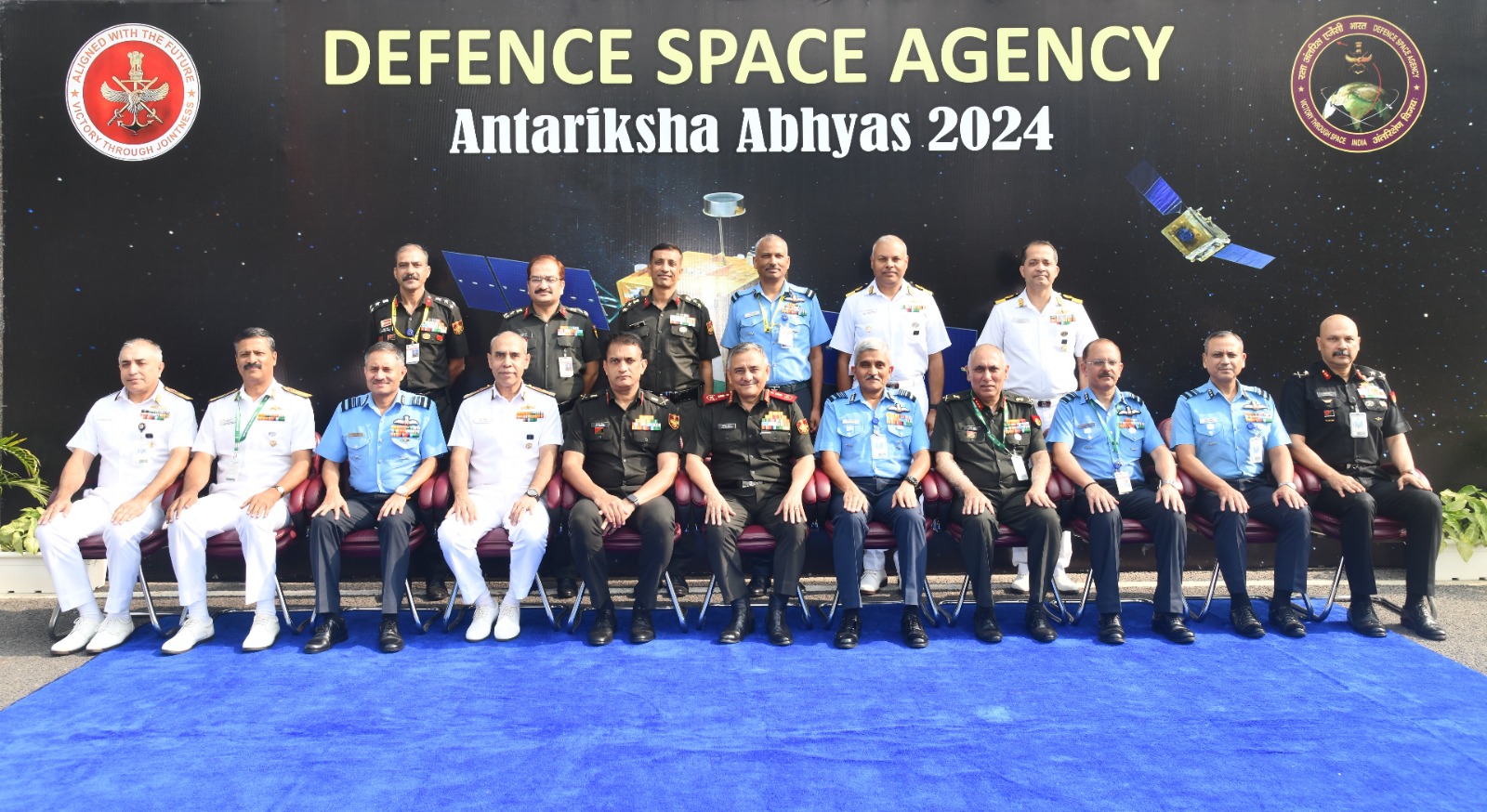
- 12 Nov 2024
In News:
- ‘AntarikshaAbhyas – 2024’ is a three-day space exercise held from November 11-13, 2024, hosted by the Defence Space Agency (DSA), Headquarters Integrated Defence Staff.
- The exercise is the first of its kind and focuses on war-gaming the growing threats to space-based assets and services.
Objective of the Exercise:
- Enhance understanding of space-based assets and their operational dependencies.
- Identify vulnerabilities in military operations in case of denial or disruption of space services.
- Integrate India's space capabilities in military operations to secure national strategic objectives.
Participants:
- Defence Space Agency (DSA) and its allied units.
- Personnel from the Army, Navy, and Air Force.
- Specialist agencies under Headquarters Integrated Defence Staff, including:
- Defence Cyber Agency (DCA)
- Defence Intelligence Agency (DIA)
- Strategic Forces Command (SFC)
- Representatives from ISRO (Indian Space Research Organisation) and DRDO (Defence Research & Development Organisation).
Focus Areas:
- Space-based asset and service operational dependency.
- Securing national interests in space through technological innovation and development.
- Assessing space service vulnerabilities and impacts on military operations.
EV as a Service Programme
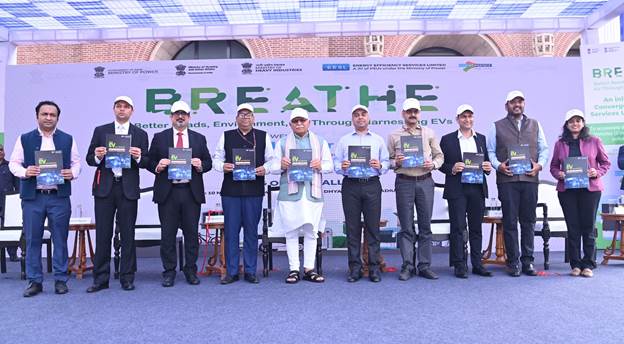
- 11 Nov 2024
In News:
- The 'EV as a Service'programme was launched by Shri Manohar Lal, Union Minister of Power and Housing & Urban Affairs, at the Major Dhyan Chand National Stadium.
- The initiative is spearheaded by Convergence Energy Services Limited (CESL), a subsidiary of Energy Efficiency Services Limited (EESL), to promote electric vehicles (EVs) in government offices.
Objective:
- The 'EV as a Service'programme aims to boost e-mobility within the government sector by deploying 5,000 electric cars in central and state government ministries, public sector enterprises (CPSEs), and various institutions over the next two years.
- The programme is designed to support India’s net-zero emissions goal by 2070 and advance the country's environmental sustainability vision.
Flexible Procurement Model:
- The programme utilizes a flexible procurement model, allowing government offices to choose from a range of E-Cars based on operational needs, making it adaptable for different government departments.
- It will help in reducing the reliance on fossil fuels, cutting carbon emissions, and contributing to energy security.
CESL’s Contribution:
- CESL has already deployed 2000 electric cars across India and is working on deploying around 17,000 electric buses.
- The 'EV as a Service'programme is a key step in helping India transition to clean mobility and reducing emissions from government fleets.
Alignment with National Initiatives:
- The launch complements the PM E-DRIVE Scheme, which aims to accelerate India’s transition to electric mobility.
- Vishal Kapoor, MD & CEO of CESL, emphasized that the initiative is helping to create a collaborative ecosystem involving manufacturers, fleet operators, policymakers, and users to scale up electric mobility in India.
Comics Commandos in Assam
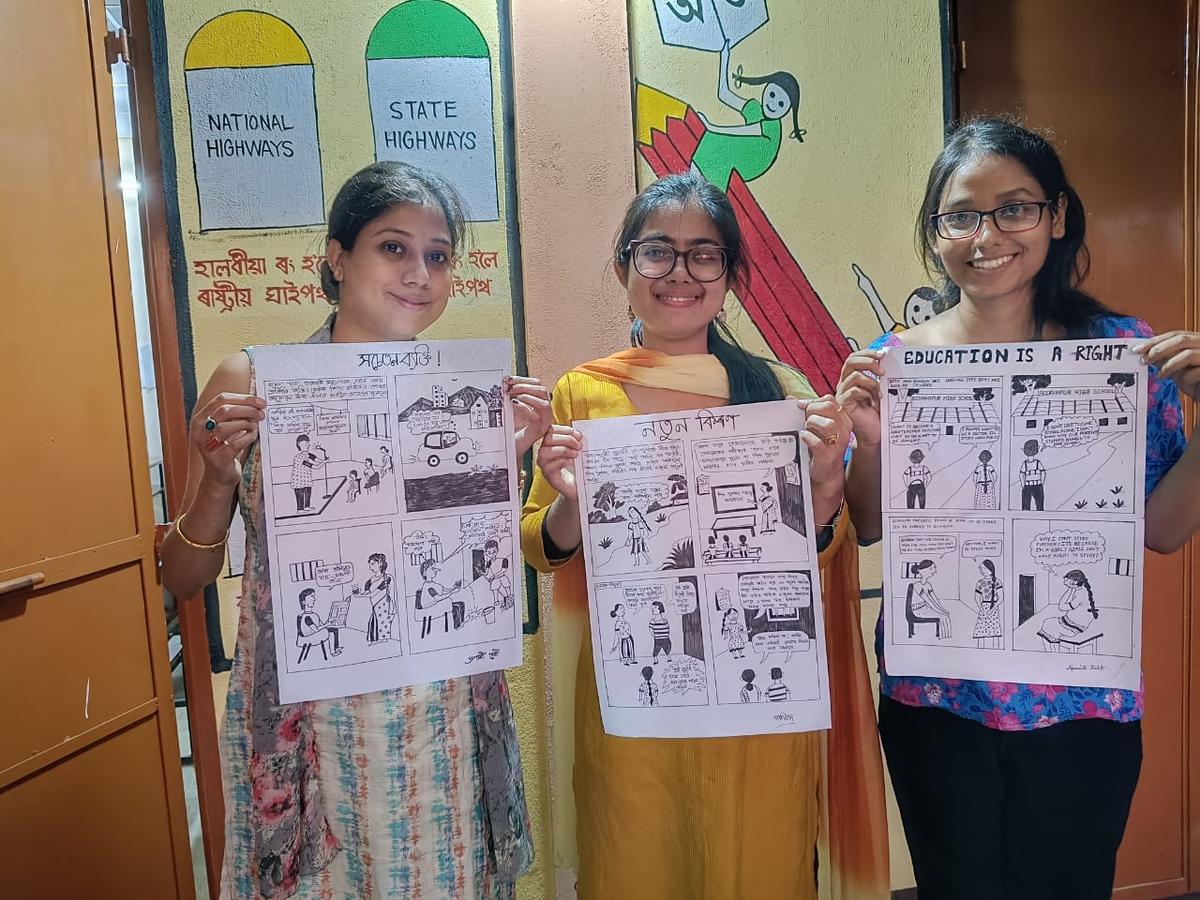
- 11 Nov 2024
In News:
- "Comics Commandos" is an innovative initiative launched in Goalpara district, Assam, aimed at combating child labour and child marriage through the creative medium of comics.
- The initiative trains 30 local youths to create comic strips that use humour and minimal text for effective communication and public engagement.
Purpose and Objectives:
- Primary Goal: To raise awareness about child labour and child marriage, two major social issues prevalent in the region, by using visual storytelling.
- The initiative aims to resonate with the local community, focusing on everyday struggles like economic hardship, child abuse, and the social norms that perpetuate these issues.
- Rising Dropout Rates: Assam has witnessed an increase in school dropout rates, from 3.3% in 2020-21 to 6.02% in 2021-22, exacerbated by economic pressures like poverty, which force children to work or marry early.
Execution and Approach:
- Training: Thirty local youths are trained to design caricatures and doodles for the comics, ensuring the messages are both simple and engaging for a broader audience.
- Visual Storytelling: The use of visuals over text helps overcome literacy barriers and makes the message more impactful and accessible.
- Community Involvement: The program collaborates with teachers and school committees to facilitate wider participation and support in creating social awareness.
Government Support:
- Chief Minister HimantaBiswaSarma initiated a state-wide campaign in 2023 against child marriage, with the ambitious goal of eradicating it by 2026. This initiative aligns with the state's broader efforts to address social issues.
Impact of the Initiative:
- Comics Commandos is being seen as an effective tool for community empowerment and awareness generation in a region that faces persistent social challenges.
- By involving local youths in the campaign, the initiative ensures community participation and ensures that the message is communicated in a culturally relevant manner.
- The program also empowers young people to use their creativity for social change, thus helping build leadership and social responsibility among the youth.
Arpactophiluspulawskii
- 11 Nov 2024
In News:
- Arpactophiluspulawskii, a new species of aphid wasp, was discovered in Nagaland (Khuzama district), marking the first record of the genus Arpactophilus outside Australasia.
- This significant discovery highlights the biodiversity of Northeastern India, a region known for its rich and unexplored fauna.
Importance of Discovery:
- The Zoological Survey of India (ZSI) researchers cataloged the species, marking a major range expansion for the genus Arpactophilus, previously only found in Australasia, including regions like New Caledonia.
- The discovery expands the genus’s known distribution by thousands of kilometers, suggesting ecological connections between Nagaland and the Australasian region.
Species Characteristics:
- Arpactophiluspulawskii is distinguished by its square-shaped head, an inverted V-shaped uplifted clypeus, and rust-colored body markings.
- It features a uniquely textured thorax, setting it apart from other species in the genus.
- The wasp was collected from an altitude of over 1,800 meters, indicating Nagaland’s ecological diversity at high altitudes.
Ecological Significance:
- The Arpactophilus genus is known for its unique nesting behavior: females use silk from their abdomen to create protective cells in old termite galleries or mud nests.
- The discovery suggests that Nagaland’s ecological conditions (e.g., high altitude, diverse habitat) support the presence of such specialized fauna, making the region an important site for entomological research.
Taxonomic Contribution:
- The species is named Arpactophiluspulawskii in honor of Dr. Wojciech J. Pulawski, a distinguished expert in wasp taxonomy.
Scientific and Research Implications:
- The discovery is expected to stimulate further entomological research in Northeastern India, especially in areas like Nagaland, which are often overlooked in global biodiversity studies.
- Researchers believe that this discovery could lead to the identification of other unknown species in the region, expanding our understanding of species distribution and the ecological connectivity between regions.
Parliamentary Panel's Review on Mechanism to Curb Fake News
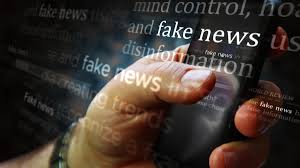
- 11 Nov 2024
In News:
- The Parliamentary Panel on Communications and Information Technology is reviewing mechanisms to curb fake news, following the Bombay High Court striking down a provision of the amended Information Technology (IT) Rules, 2021.
- The controversial provision allowed the government to identify and flag "fake news" on social media through its Fact Check Unit (FCU).
- The panel, led by BJP MP Nishikant Dubey, has summoned representatives from News Broadcasters and Digital Association and the Editors Guild of India to discuss the issue on November 21, 2024.
Issue with the Amended IT Rules:
- The IT Rules, 2021 were amended in April 2022 to include “government business” under the definition of fake news, expanding the scope of content flagged by the FCU.
- This amendment was challenged by media bodies and individuals like comedian Kunal Kamra, leading to the Bombay High Court striking it down in 2024.
- The court deemed the provisions unconstitutional, citing concerns about transparency and the potential misuse of power.
Types of Fake News:
- Misinformation: False information spread unintentionally.
- Disinformation: Deliberately false information meant to deceive and cause harm.
Status of Fake News in India:
- India as a major spreader of misinformation: The World Economic Forum's Global Risks 2024 report identifies disinformation as a significant short-term risk, with India as one of the largest consumers and producers of false information.
- Social Media Influence: Platforms like Facebook, WhatsApp, Twitter, and YouTube are widely used in India for news dissemination, making them a breeding ground for fake news.
- Spread of Political and Religious Misinformation: Fake news often serves political or religious agendas, leading to societal polarization and conflict.
Government Efforts to Combat Fake News:
- IT (Intermediary Guidelines and Digital Media Ethics Code) Amendment Rules, 2023: This amendment expanded the scope of "fake news" to include “government business” and gave the FCU the authority to flag misleading content.
- Press Information Bureau (PIB) Fact Check Unit: The PIB continues to run a fact-checking initiative, but it lacks the authority to remove flagged content from social media platforms.
- Digital Literacy Campaigns: Programs like Pradhan Mantri Gramin Digital Saksharta Abhiyan (PMGDISHA) aim to improve digital literacy, especially in rural areas, to help citizens identify and avoid fake news.
National Education Day 2024
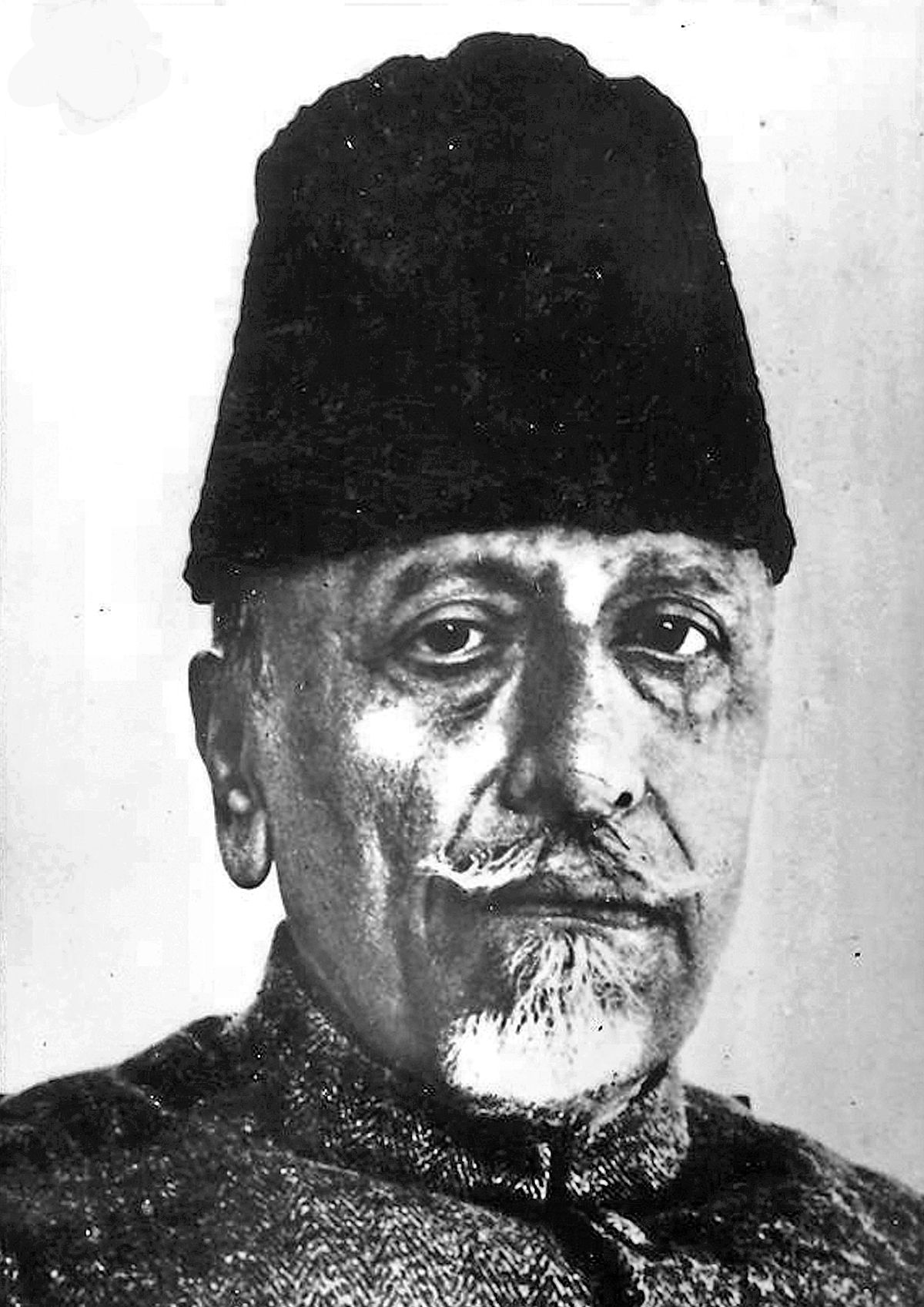
- 11 Nov 2024
In News:
National Education Day is celebrated annually on November 11 to honor the birth anniversary of Maulana Abul Kalam Azad, India's first Education Minister and a prominent freedom fighter, scholar, and educator.
Key Highlights:
- Establishment:
- The observance was instituted by the Ministry of Human Resource Development (now Ministry of Education) in 2008 to recognize Azad’s pivotal contributions to India’s education system and his vision for a progressive, educated society.
- Azad's Contributions to Education:
- Azad played a significant role in shaping India's post-independence educational landscape, establishing critical institutions such as:
- University Grants Commission (UGC)
- All India Council for Technical Education (AICTE)
- Indian Institutes of Technology (IIT), including IIT Kharagpur
- Indian Council for Cultural Relations (ICCR)
- Promoted scientific research, cultural institutions, and technical education.
- Azad played a significant role in shaping India's post-independence educational landscape, establishing critical institutions such as:
- Significance of National Education Day:
- Reflects India’s commitment to promoting quality and inclusive education.
- Emphasizes the importance of education in empowering individuals and fostering national progress.
- Highlights educational reforms, literacy, and equal access to education as tools for societal transformation and empowerment.
- Theme for 2024:
- Although not officially published yet, the theme is expected to focus on inclusive, high-quality education, underlining the need for educational systems that equip students with skills to thrive in a rapidly evolving world.
- Focus Areas:
- Promoting literacy, equal access to education, and educational reforms.
- Developing critical thinking, creativity, and emotional intelligence in students.
Indian Military Heritage Festival 2024

- 10 Nov 2024
In News:
- Chief of Defence Staff General Anil Chauhan inaugurated the 2nd edition of the Indian Military Heritage Festival (IMHF) on November 8, 2024, in New Delhi.
- The two-day festival engages global and Indian experts, corporations, academicians, and non-profits focusing on India’s national security, foreign policy, military history, and military heritage.
Launch of Project Shaurya Gatha:
- Project ‘Shaurya Gatha’ was launched to conserve and promote India’s military heritage.
- The initiative, spearheaded by the Department of Military Affairs and USI of India, focuses on education and tourism to highlight India’s military history and valor.
- Publications Released:
- General Chauhan released important military publications:
- "Because of this: A History of the Indo-Pak Air War December 1971" by Air Marshal Vikram Singh (Retd).
- "Valour and Honour", a joint publication by the Indian Army and USI of India.
- "War-wounded, Disabled Soldiers, and Cadets", a joint publication by USI and the War Wounded Federation.
- General Chauhan released important military publications:
- Festival's Significance:
- The festival addresses the gap in public awareness regarding India’s military heritage and security concerns.
- It aims to enhance understanding of India’s military traditions, security issues, and the country’s efforts toward self-reliance in military capabilities under the Aatmanirbhar Bharat initiative.
Zhurong Rover
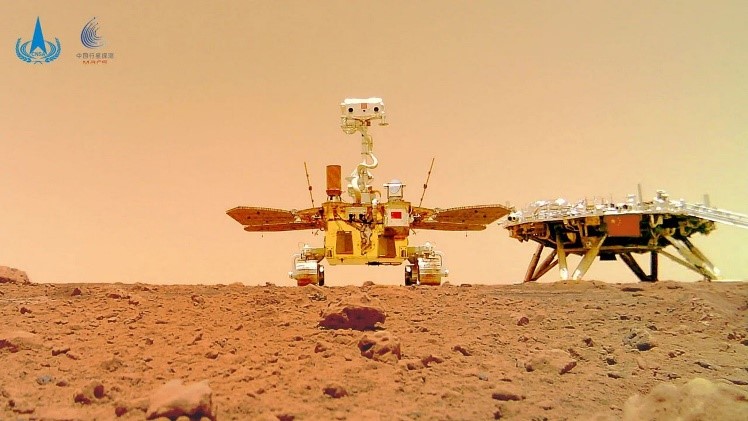
- 10 Nov 2024
In News:
Chinese rover helps find evidence of ancient Martian shoreline.
Mission Overview:
- Rover: Zhurong, part of China’s Tianwen-1 Mars exploration program.
- Mission Launch: Zhurong landed in 2021 in the Utopia Planitia region of Mars' northern hemisphere.
- Key Discovery: Evidence of an ancient ocean on Mars, suggesting a habitable past for the planet.
Key Findings:
- Geological Features Indicating a Coastline:
- Data from Zhurong and orbiting spacecraft (Tianwen-1 Orbiter, NASA's Mars Reconnaissance Orbiter) revealed geological features such as troughs, sediment channels, and mud volcano formations, suggesting the existence of a Martian coastline.
- Features indicate both shallow and deeper marine environments, supporting the idea of a past ocean.
- Age of the Ocean:
- The ocean likely existed around 3.68 billion years ago, with its surface potentially frozen in a geologically short period.
- The ocean is thought to have disappeared by 3.42 billion years ago.
Evolutionary Scenario of Mars:
- At the time of the ocean, Mars might have already begun transitioning away from a habitable planet, losing much of its atmosphere and becoming cold and dry.
- The ocean may have formed after Mars' climate began to change, suggesting that it was once more hospitable, possibly capable of supporting microbial life.
Implications for Life on Mars:
- The presence of water, a key ingredient for life, raises the possibility that Mars could have supported microbial life in its early history.
- When Mars had a thick, warm atmosphere, conditions might have been favorable for life, as microbial life would have been more likely to exist.
Significance of Zhurong's Contribution:
- Zhurong exceeded its original mission duration of three months, operating until May 2022, helping provide key data to understand Mars' ancient water history.
- The discovery adds to ongoing efforts to study the disappearance of water on Mars and its implications for the planet's habitability.
Future Exploration:
- Other studies, including seismic data from NASA’s InSight lander, suggest that liquid water might still exist deep beneath the Martian surface, hinting at the possibility of finding water in the planet's subsurface in the future.
World’s First CO? to Methanol Plant

- 10 Nov 2024
In News:
- NTPC has achieved the first-ever synthesis of CO? (captured from flue gas) and hydrogen (produced via a PEM electrolyzer) into methanol at its Vindhyachal plant.
- This marks a significant step in carbon management technology, aimed at advancing sustainable fuel production.
About CO?-to-Methanol Conversion:
- Carbon Dioxide Capture:
- CO? is captured from industrial sources, such as power plants, or directly from the atmosphere.
- Hydrogen Production:
- Renewable energy sources like solar or wind power are used to produce hydrogen through water electrolysis.
- Methanol Synthesis:
- The captured CO? is combined with hydrogen in the presence of a catalyst to produce methanol, typically under high pressure and temperature conditions.
Benefits of CO?-to-Methanol Conversion:
- Carbon Capture and Utilization (CCU):
- This technology reduces the impact of CO? on the atmosphere by converting it into useful products.
- Renewable Fuel Source:
- Methanol produced through this process can be used as a fuel for transportation, power generation, or as a feedstock for chemicals.
- Energy Storage:
- Methanol offers a more practical storage and transportation option than hydrogen, making it a potential energy storage solution and aiding the transition to hydrogen-based energy systems.
- Versatile Feedstock:
- Methanol is widely used in producing chemicals, solvents, and plastics, supporting various industrial applications.
What is Methanol?
- Brief: Methanol, also known as methyl alcohol or wood alcohol, is the simplest form of alcohol. It is a clear, colorless, and flammable liquid with a distinctive odor.
- Key Properties:
- Colorless, miscible with water, toxic if ingested, flammable.
QS World University Rankings

- 10 Nov 2024
In News:
The QS World University Rankings: Asia 2025 spotlights the top institutions in Eastern, Southern, South-Eastern, and Central Asia, emphasizing academic excellence, research, innovation, and internationalization.
India's Performance:
India has shown a remarkable upward trajectory, featuring:
- Two institutions in the Top 50:
- IIT Delhi ranked 44th (up from 46th), with a 99% employer reputation score.
- IIT Bombay ranked 48th, excelling with a 99.5% employer reputation score and 96.6% academic reputation score.
- Top 100 Institutions:
- IIT Madras (56th), IIT Kharagpur (60th), Indian Institute of Science (62nd), IIT Kanpur (67th), and University of Delhi (81st).
- Top 150 Institutions:
- IIT Guwahati, IIT Roorkee, Jawaharlal Nehru University, Chandigarh University (120th), UPES (148th), and VIT (150th).
Key Indicators for India:
- International Research Network and Citations per Paper contribute to India's growing global academic reputation.
- Papers per Faculty and Staff with PhD are India’s strongest indicators, reflecting robust research output and high teaching standards.
- Anna University achieved a perfect score of 100 in the Papers Per Faculty indicator, emphasizing high research output.
- North Eastern Hill University and University of Agricultural Sciences, Bangalore received a perfect score of 100 in the Faculty-Student Indicator.
Growth of Indian Institutions:
- India now has 46 institutions in the 2025 rankings, up from just 11 in 2015, marking a 318% increase over the past decade.
- India dominates Southern Asia with seven institutions in the top 10, showcasing the country's strengthening educational landscape.
India's Growing Global Influence:
- India's achievements underscore its commitment to academic excellence, competitiveness, and resilience in global higher education.
- Institutions like IIT Delhi and IIT Bombay highlight India’s ability to balance research productivity with high-quality teaching, enhancing its reputation as a global education hub.
One Sun One World One Grid (OSOWOG) Initiative
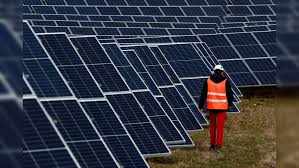
- 10 Nov 2024
In News:
- India is in talks with Oman, UAE, Saudi Arabia, Maldives, and Singapore to establish cross-border electricity transmission lines.
- This is part of the ambitious OSOWOG initiative to create a global renewable energy grid.
Key Points:
- Proposed by the Prime Minister of India at the 2018 International Solar Alliance (ISA) Assembly.
- Aims to create a transnational electricity grid that delivers power worldwide.
- Led by India and the UK, in collaboration with ISA and the World Bank Group.
Vision of OSOWOG:
- Connect regional grids through a common infrastructure for the transfer of renewable energy, focusing on solar power.
- Harness solar and other renewable energy from regions where the sun is shining and efficiently transmit it to areas of need.
- Aim to provide power to 140 countries using clean and efficient solar energy.
Phases of OSOWOG:
- Phase 1:
- Connect the Indian grid with grids in the Middle East, South Asia, and South-East Asia.
- Share solar and other renewable energy resources.
- Phase 2:
- Expand the interconnected grid to include renewable resources from Africa.
- Phase 3:
- Achieve a global interconnection aiming for 2,600 GW by 2050.
- Integrate as many countries as possible into a single renewable energy grid.
Global Collaboration:
- Involves national governments, international organizations, legislators, power operators, and experts.
- Focus on accelerating infrastructure development for a clean energy-powered world.
PyPIM platform

- 09 Nov 2024
In News:
Israeli researchers from the Israel Institute of Technology have developed the PyPIM platform, which allows computers to process data directly in memory, eliminating the need for a central processing unit (CPU). This breakthrough aims to address key challenges in modern computing, particularly in terms of energy consumption and processing efficiency.
Key Features of the PyPIM Platform:
- Integration with Python and PIM Technology:
- The PyPIM platform merges Python programming with digital processing-in-memory (PIM) technology, facilitating in-memory computing where computations occur directly within memory instead of transferring data to and from the CPU.
- Functionality and Innovations:
- Direct In-Memory Computations: PyPIM uses specialized instructions that enable computations to take place directly in memory, reducing the need for data movement between the CPU and memory.
- Developer-Friendly: It allows developers to use familiar languages like Python to write software for in-memory computing systems.
- Solving the "Memory Wall" Issue:
- The platform addresses the memory wall problem, where the speed of the CPU and memory exceeds the data transfer rates, creating bottlenecks that lead to inefficiencies.
- By performing calculations directly in memory, PyPIM reduces time and energy spent on data transfer, optimizing performance.
- Performance Improvements:
- Energy and Time Efficiency: By minimizing energy-intensive data transfers, PyPIM leads to significant energy and time savings.
- Simulation Tools: The platform includes tools that allow developers to simulate potential performance improvements from in-memory processing.
- Real-World Benefits:
- Faster Processing: Tasks performed using PyPIM have demonstrated faster processing speeds, with minimal code changes, particularly in mathematical and algorithmic tasks.
- The platform delivers a significant performance boost in areas like data analysis and algorithmic operations.
The PyPIM platform marks a pivotal advancement in computing architecture, providing a more energy-efficient and faster alternative to traditional CPU-dependent systems by reducing reliance on external memory processing and cutting down on data transfer delays.
AUSTRAHIND 2024
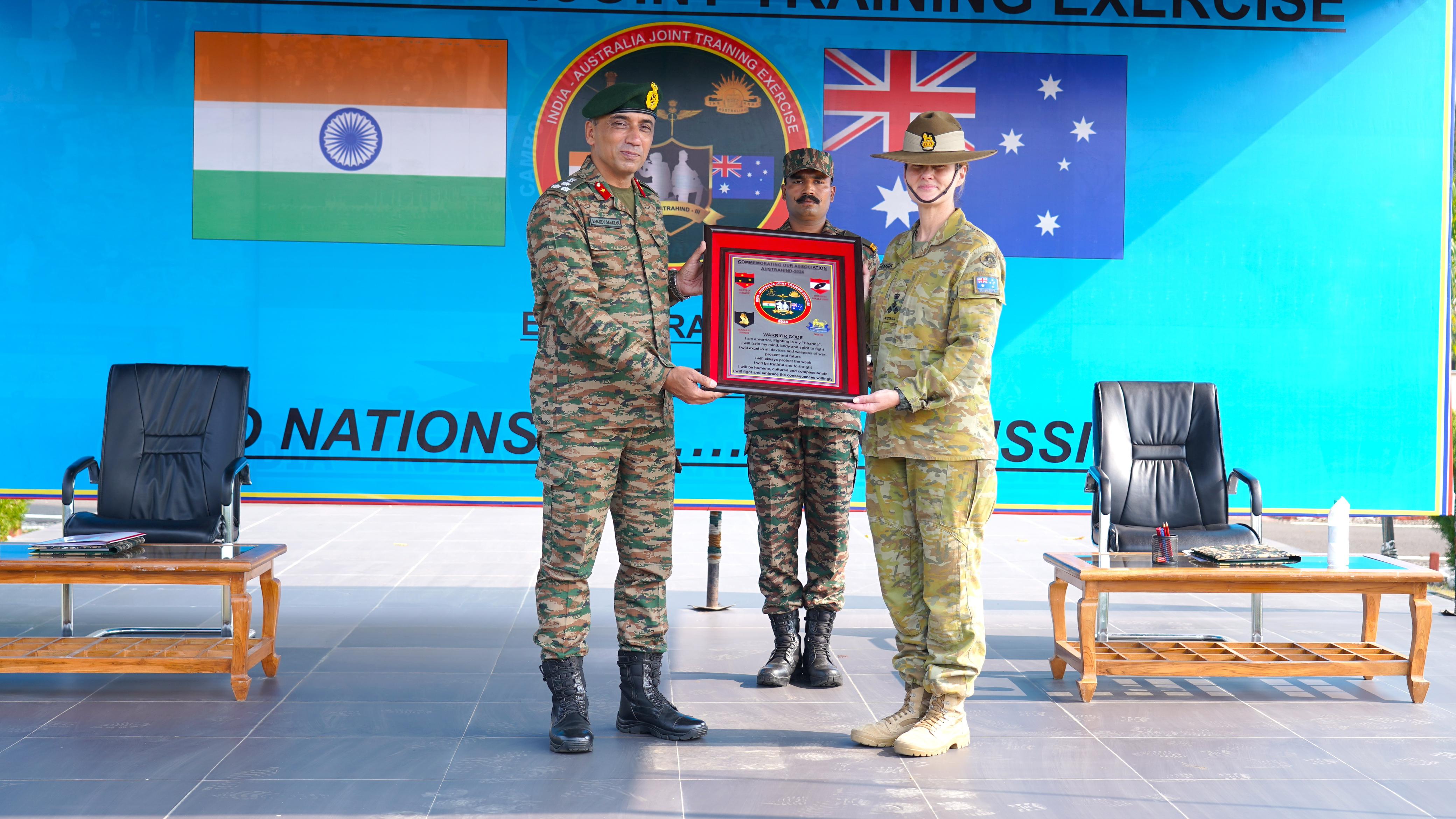
- 09 Nov 2024
In News:
- The 3rd edition of Exercise AUSTRAHIND started on 8th November 2024 at the Foreign Training Node in Pune, Maharashtra. The exercise will run until 21st November 2024.
Participating Forces:
- Indian Contingent: 140 personnel, primarily from the DOGRA Regiment and Indian Air Force (14 personnel).
- Australian Contingent: 120 personnel from the 13th Light Horse Regiment of the 10th Brigade of the 2nd Division.
Purpose of the Exercise:
- Enhance Military Cooperation between India and Australia.
- Promote Interoperability in conducting joint sub-conventional operations in semi-urban and semi-desert terrain.
- Focus on operations under Chapter VII of the UN mandate.
Key Objectives:
- Joint Tactical Drills and Planning to improve coordination between the forces.
- Training in counter-terrorism operations, special heli-borne operations, and drone countermeasures.
Phases of the Exercise:
Combat Conditioning and Tactical Training Phase:
- Includes drills such as terrorist response, territory capture, and Raid and Search & Destroy Missions.
- Establishment of Joint Operations Centre and securing critical infrastructure like helipads.
- Training on drone operations and counter-drone measures.
Validation Phase: Practical application and testing of skills learned in the previous phase.
Significance:
Best Practices Sharing: Both sides will exchange tactics, techniques, and procedures for conducting effective tactical operations.
Camaraderie Building: The exercise will foster a strong bond between soldiers from both countries.
Background: AUSTRAHIND is an annual exercise held alternately in India and Australia. The last edition took place in Australia in December 2023.
Digital Population Clock

- 09 Nov 2024
In News:
- Bengaluru's first digital population clock was inaugurated at the Institute for Social and Economic Change (ISEC) on November 8, 2024.
- The initiative is collaboration between ISEC and the Union Ministry of Health and Family Welfare (MoHFW).
Purpose:
- The clock provides real-time population estimates for Karnataka and India.
- It aims to enhance awareness about population dynamics and provide accurate demographic data for research and policy analysis.
Key Features:
- Real-time Updates:
- Karnataka’s population is updated every 1 minute and 10 seconds.
- India’s population updates every 2 seconds.
- Precision:
- The clock operates with satellite connections for real-time, accurate data updates.
- It functions autonomously with integrated components, ensuring continuous and precise tracking.
- Location: The clock is prominently displayed at the entrance of ISEC.
- National Expansion: Similar digital population clocks are being installed in 18 Population Research Centres across India by MoHFW.
Significance:
- Awareness: The clock serves as a visual tool to highlight the rapid pace of population growth and its implications for sustainable development.
- Research and Analysis: The clock is part of a broader effort to improve demographic studies and inform policy-making.
- Census Data Research Workstation:
- ISEC has introduced a new research workstation, supported by MoHFW, for in-depth demographic analysis.
- The facility is equipped with advanced software for studying population trends and supporting academic research.
RNA Editing
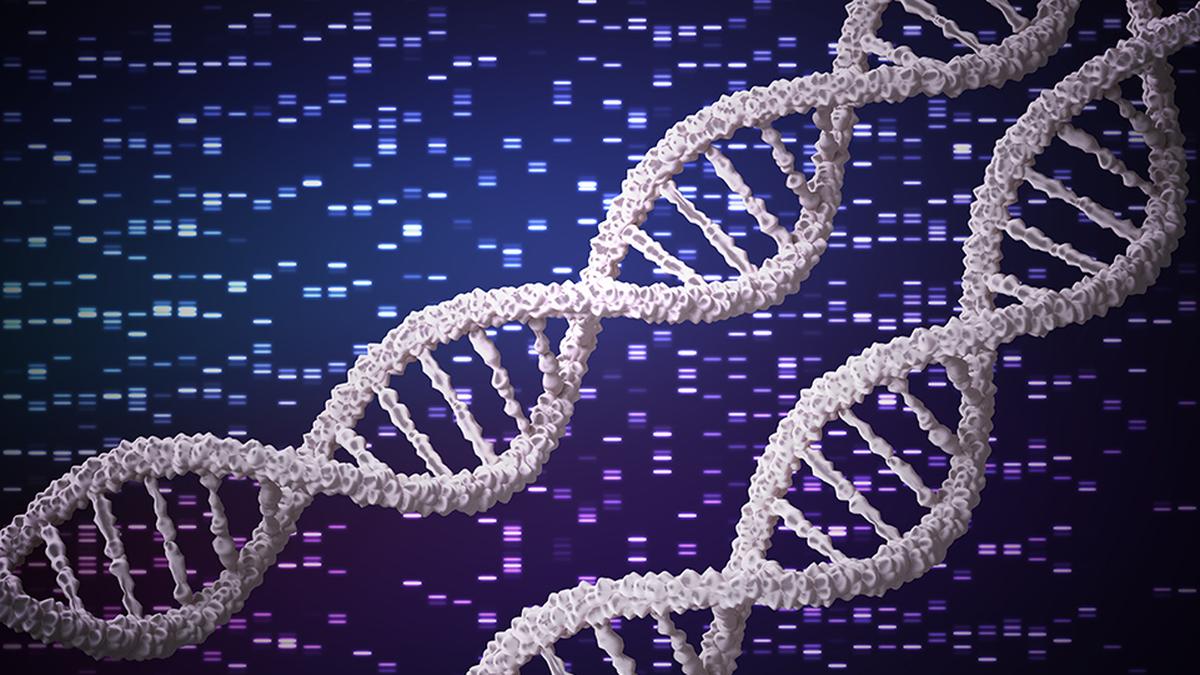
- 09 Nov 2024
In News:
Wave Life Sciences became the first biotechnology company to treat a genetic condition by editing RNA at the clinical level.
- What is RNA Editing?
- Definition: RNA editing is the modification of messenger RNA (mRNA) after it’s synthesized from DNA but before it is translated into proteins.
- Process: mRNA consists of exons (coding regions) and introns (non-coding regions). Exons code for proteins, while introns are removed before protein synthesis.
- Types of RNA Modifications:
- Addition: Insertion of a nucleotide.
- Deletion: Removal of a nucleotide.
- Substitution: Replacement of one nucleotide with another.
- Mechanism of RNA Editing:
- Involves Adenosine Deaminase Acting on RNA (ADAR) enzymes.
- ADAR enzymes modify adenosine to inosine, which is recognized as guanosine, allowing mRNA to be corrected.
- Guide RNA (gRNA) directs ADAR enzymes to the specific mRNA region for editing.
- Clinical Use of RNA Editing:
- Wave Life Sciences used RNA editing to treat α-1 antitrypsin deficiency (AATD), a genetic disorder.
- Other potential applications include treating diseases such as Huntington’s disease, Duchenne muscular dystrophy, Parkinson’s disease, obesity, and neurological disorders.
- Challenges in RNA Editing:
- Temporary Effects: RNA editing provides temporary changes, requiring repeated treatments for sustained effects.
- Delivery Issues: Current delivery methods, like lipid nanoparticles and adeno-associated virus vectors, have limitations in carrying large molecules.
- Specificity: ADARs may cause unintended changes in non-target regions of mRNA, leading to potential side effects.
- Comparison: RNA Editing vs. DNA Editing:
- Safety: RNA editing causes temporary changes and presents fewer risks than DNA editing, which makes permanent alterations to the genome.
- Immune Response: RNA editing uses enzymes naturally found in the body (ADAR), which reduces the risk of immune reactions, unlike DNA editing tools like CRISPR-Cas9 that can trigger immune responses.
- Significance of RNA:
- Structure: RNA is a nucleic acid, similar to DNA but typically single-stranded. It consists of a backbone of ribose sugars and phosphate groups, with bases adenine (A), uracil (U), cytosine (C), and guanine (G).
- Types of RNA:
- Messenger RNA (mRNA): Carries genetic information from DNA to ribosomes for protein synthesis.
- Ribosomal RNA (rRNA): Forms the core of the ribosome and catalyzes protein synthesis.
- Transfer RNA (tRNA): Transfers amino acids to ribosomes during protein synthesis.
- Regulatory RNAs: Regulate gene expression.
- α-1 Antitrypsin Deficiency (AATD):
- A genetic disorder where the protein α-1 antitrypsin accumulates in the liver, damaging both the liver and lungs.
- Treatments include weekly intravenous therapy or, in severe cases, liver transplants.
- RNA editing offers a potential new treatment approach.
- Global Impact:
- RNA editing is still in its early stages but shows promise for treating a wide range of genetic and chronic conditions.
- Ongoing research and clinical trials suggest RNA editing could become a key part of future gene-editing therapies.
Global Education Monitoring Report 2024
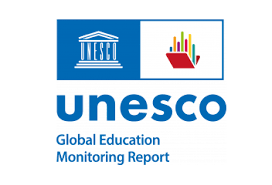
- 09 Nov 2024
In News:
- Released at the Global Education Meeting, hosted in Fortaleza by Brazil, the G20 President.
- Highlights progress and challenges in global education, with a focus on leadership, financing, and access.
Key Observations:
Leaders as Agents of Change:
- Education leadership is defined as social influence towards achieving common educational goals.
- Education leaders must:
- Define clear purposes and influence change.
- Balance learning outcomes with equity, quality, and inclusion.
Funding Deficits:
- 4 out of 10 countries spend less than 4% of their GDP on education.
Out-of-School Children:
- 251 million children and youth globally remain out of school, with only a 1% reduction since 2015.
Regional Disparities in Education Access:
- Central and Southern Asia show significant progress, but countries like Afghanistan, Bangladesh, India, and Pakistan still have large out-of-school populations.
Recommendations:
- Leadership Development: Empower school principals with the autonomy to manage schools effectively.
- Capacity Building for System Leaders: Strengthen the ability of education officials to act as system leaders.
- Climate Change Education: Introduce climate change topics in early education across subjects, not limited to science.
India’s Educational Initiatives:
- National Education Policy (NEP) 2020: Focuses on developing school leadership through training and workshops for principals.
- NISHTHA Program: Aims to improve leadership and management competencies of school heads and teachers.
Current Educational Landscape:
- Since 2015, 110 million children have entered school, and 40 million more complete secondary education.
- However, 33% of children in low-income countries remain out of school, compared to only 3% in high-income countries.
- Sub-Saharan Africa houses more than half of the global out-of-school youth.
Challenges in Education Financing:
- UNESCO–World Bank report highlights that 40% of countries allocate less than 15% of their public expenditure to education.
- Countries investing less than 4% of GDP in education face significant resource shortages.
- Low-income countries spend an average of $55 per learner, while high-income countries spend $8,543 per learner.
Need for Innovative Financing Mechanisms:
- Debt-for-Education Swaps: Proposes converting unsustainable debt into funding for education, leveraging past successful initiatives.
- Multilateral Platforms: Suggested to facilitate global negotiations for converting debt into educational investments, involving entities like UNESCO and the G20.
International Cooperation and Solidarity:
- Decline in Education Assistance: Official development assistance for education has decreased from 9.3% in 2019 to 7.6% in 2022.
- Strengthening Partnerships: The need for enhanced global cooperation to fill the educational financing gap and ensure equitable access to quality education.
Adaptation Gap Report 2024
- 08 Nov 2024
In News:
The Adaptation Gap Report 2024, published by the United Nations Environment Programme (UNEP), underscores the urgent need for enhanced climate adaptation efforts, particularly through increased financial support for developing countries. The report, titled Come Hell and High Water, provides an annual assessment of global adaptation progress in planning, implementation, and financing.
Key Findings
- Adaptation Gap:
- The adaptation finance gap is estimated at $187–359 billion per year.
- Current adaptation finance falls short, with only $28 billion provided in 2022, meeting just 5% of projected needs.
- Adaptation Progress:
- International public adaptation finance to developing countries rose to $27.5 billion in 2022, up from $19 billion in 2019, reflecting progress toward the Glasgow Climate Pact's goal of doubling finance by 2025.
- Significance of Adaptation:
- Ambitious adaptation measures could reduce global climate risk by 50%.
- For instance, $16 billion annually in agriculture could prevent climate-induced hunger for 78 million people.
- Impact of Global Warming:
- According to UNEP's Emissions Gap Report 2024, global temperatures may increase by 2.6°C–3.1°C above pre-industrial levels by 2100.
- Developing countries face severe vulnerabilities, evidenced by recent floods in Nepal, Nigeria, and Chad.
- National Adaptation Plans (NAPs):
- While 171 countries have at least one adaptation policy, progress in implementation remains slow.
- 10 countries have shown no interest in developing adaptation policies.
Challenges in Adaptation Financing
- Financial Burden: Adaptation projects such as seawalls and resilient infrastructure are costly for developing nations.
- Funding Shortfalls:
- Developed nations have failed to meet financial commitments like the $100 billion goal set for 2020.
- The adaptation finance gap remains significant in non-private sector-funded areas, such as ecosystem preservation.
- High-Interest Loans: Much current funding relies on high-interest loans, increasing the debt burden for recipient countries.
Recommendations
- Adopt New Financing Goals: Establish an ambitious New Collective Quantified Goal for climate finance at COP29.
- Strategic Adaptation Financing:
- Shift from project-based to anticipatory and transformational financing.
- Invest in harder-to-finance areas like ecosystem preservation and cultural heritage.
- Alternative Financing Models: Encourage risk finance, resilience bonds, debt-for-adaptation swaps, and payments for ecosystem services.
Global and Indian Initiatives
Global Initiatives:
- Paris Agreement: Sets a global adaptation goal to enhance resilience.
- UAE Framework for Global Climate Resilience: Introduced at COP28, focusing on agriculture, water, and health adaptation targets.
- Adaptation Fund: Provides project funding for developing nations under the Kyoto Protocol.
Indian Initiatives:
- National Action Plan on Climate Change (NAPCC): Includes eight missions, such as the National Adaptation Fund for Climate Change (NAFCC).
- Sectoral Schemes:
- MISHTI: Mangrove initiative for shoreline protection.
- Amrit Dharohar: Enhances wetland ecosystems.
- India's adaptation spending accounted for 5.6% of GDP in 2021–2022.
PM Vishwakarma Yojana

- 08 Nov 2024
In News:
The PM Vishwakarma Yojana is a landmark initiative by the Indian government aimed at revitalizing traditional craftsmanship and empowering artisans and craftspeople, often referred to as Vishwakarmas. Launched on September 17, 2023, during Vishwakarma Jayanti, the scheme highlights the government's commitment to preserving India's rich cultural heritage and supporting the unorganized sector.
Key Highlights
- Objective:
- To strengthen the Guru-Shishya tradition and improve the quality, reach, and marketability of products and services by artisans.
- To integrate Vishwakarmas into domestic and global value chains, making them self-reliant.
- To alleviate poverty by supporting rural and urban artisans across India.
- Financial Outlay:,Fully funded by the Union Government with a ?13,000 crore budget spanning five years (2023–2028).
- Eligibility:
- Open to rural and urban artisans and craftspeople involved in 18 traditional crafts, such as blacksmithing, goldsmithing, pottery, boat making, and carpentry.
- Covers 5 lakh families in the first year and aims to reach 30 lakh families over five years.
- Key Benefits:
- Financial Support:
- Collateral-free credit of ?1 lakh (first tranche) and ?2 lakh (second tranche) at a concessional 5% interest rate.
- Government provides 8% interest subvention upfront to banks.
- Toolkit Incentive: ?15,000 via e-vouchers for acquiring modern tools.
- Training and Skill Development: Basic and advanced skill training to create industry-ready manpower.
- Digital and Marketing Incentives: Encourages digital transactions and provides marketing support.
- Recognition: Beneficiaries receive a PM Vishwakarma Certificate and ID Card.
- Market Linkage: Facilitates better market access for artisan products.
- Financial Support:
- Achievements (as of Nov 4, 2024):
- 25.8 million applications received.
- 2.37 million artisans registered after verification.
- Over 1 million artisans benefited from toolkit incentives.
Significance
- Promotes inclusive development by supporting an underserved segment of the workforce.
- Recognizes and supports traditional skills passed down through generations, preserving India’s cultural diversity.
- Enhances productivity and competitiveness by integrating artisans into MSME sectors.
- Encourages sustainability through the promotion of handmade, eco-friendly crafts.
Key Institutions Involved
- Ministry of Micro, Small, and Medium Enterprises (MSME): Oversees implementation.
- Common Services Centres (CSC): Facilitates registration through biometric-based PM Vishwakarma Portal.
Challenges Addressed
- Lack of access to modern tools and financial support.
- Insufficient market linkages and exposure for traditional crafts.
- Limited opportunities for skill enhancement and product development.
Protected Planet Report 2024
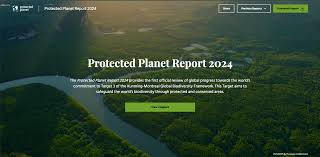
- 08 Nov 2024
In News:
The Protected Planet Report 2024, released by UNEP-WCMC and IUCN, evaluates global progress toward achieving Target 3 of the Kunming-Montreal Global Biodiversity Framework (KM-GBF). This target aims to conserve 30% of Earth's terrestrial, inland water, coastal, and marine areas by 2030.
Key Highlights of the Report
- Current Global Coverage
- Land and Inland Waters: 17.6% protected.
- Oceans and Coastal Areas: 8.4% protected.
- Progress since 2020: Minimal increase (<0.5% for both realms), equivalent to an area twice the size of Colombia.
- Remaining Challenges to Achieve Target 3 by 2030
- Land: An additional 12.4% of land area must be protected (equivalent to Brazil + Australia).
- Ocean: 21.6% more marine areas must be safeguarded (larger than the Indian Ocean).
- Key Gaps:
- Only 8.5% of protected areas on land are well-connected.
- Only one-fifth of the areas critical for biodiversity are fully protected.
- Biodiversity representation remains uneven, with some ecological regions having no protection at all.
- Governance and Effectiveness Issues
- Less than 5% of protected land and 1.3% of marine areas have management effectiveness assessments.
- Only 0.2% of protected land and 0.01% of marine areas have undergone equitable governance assessments.
- Indigenous governance covers less than 4% of protected areas despite Indigenous and traditional territories covering 13.6% of the terrestrial areas.
- Ocean Conservation Progress: Most progress is in national waters; however, areas beyond national jurisdiction (the high seas) remain underrepresented (<11% coverage).
- Data Deficiency: Insufficient data to measure biodiversity outcomes, equity, and governance in protected areas.
Importance of Target 3
- Biodiversity Benefits: Protected areas play a critical role in halting and reversing biodiversity loss.
- Ecosystem Services: These areas contribute to clean air, water, climate regulation, and food security.
- Cultural and Economic Significance: They uphold the rights of Indigenous Peoples and local communities, ensuring equitable governance and sustainable resource use.
Key Recommendations
- Accelerate Conservation Efforts:
- Expand protected and conserved areas with a focus on biodiversity hotspots.
- Ensure areas are ecologically connected and effectively managed.
- Strengthen Indigenous and Local Contributions:
- Recognize and support the stewardship of Indigenous Peoples and local communities.
- Ensure their voices and knowledge systems are integrated into conservation planning.
- Improve Governance and Equity:
- Address gaps in equitable governance and include rights-based approaches.
- Global Cooperation:
- Increase international financing to developing nations for biodiversity conservation.
- Foster cross-border partnerships and support data-sharing initiatives.
- Enhance Data Availability:
- Collect and disseminate data on the effectiveness of protected areas and their biodiversity outcomes.
India’s Role and Strategy
- Commitment to KM-GBF: India updated its National Biodiversity Strategy and Action Plan (NBSAP) to align with the KM-GBF goals, aiming to protect 30% of natural areas by 2030.
- Focus on Restoration: Prioritizes the restoration of forests, rivers, and other ecosystems to maintain essential resources like clean air and water.
- Indigenous Participation: India emphasizes integrating Indigenous territories into its conservation framework.
Adoption Awareness Month 2024

- 08 Nov 2024
In News:
Adoption Awareness Month is an annual event where CARA and all its stakeholders come together to raise awareness about the legal process of adoption.
Context
- Celebrated by: Ministry of Women and Child Development (MWCD) and the Central Adoption Resource Authority (CARA).
- When: November 2024.
- Theme: “Rehabilitation of Older Children through Foster Care and Foster Adoption.”
- Purpose: To raise awareness about legal adoption, foster care, and the rehabilitation of older children in India.
Objectives
- Promote Legal Adoptions:
- Create awareness about the legal framework and processes for adoption.
- Encourage prospective adoptive parents (PAPs) to adopt older children or children with special needs.
- Foster Care Focus:
- Highlight the importance of foster care as a rehabilitative measure for older children.
- Public Engagement:
- Engage various stakeholders, including adoptive families, PAPs, older adoptees, and the general public, to share experiences and insights.
Key Activities
- Nationwide Campaigns:
- Offline events in states like Ladakh, Assam, Mizoram, Maharashtra, Karnataka, and West Bengal.
- Mega event in Lucknow, Uttar Pradesh, on November 21, 2024.
- Online Initiatives (via MyGov India):
- Storytelling, poster making, slogan writing, pledges, and online surveys.
- Informative content on adoption and foster care shared via social media.
- Interactive Engagements:
- Cultural programs, competitions, Q&A sessions with PAPs, and discussions with stakeholders.
- Sharing of experiences by older adoptees and adoptive parents.
Significance of Adoption Awareness Month
- Focus on Older Children:
- Addresses challenges faced by older children in finding permanent families.
- Promotes inclusive adoption practices for children with special needs or in foster care.
- Stakeholder Involvement:
- Builds trust and awareness by sharing real-life adoption experiences.
- Encourages societal participation in the rehabilitation of vulnerable children.
- Policy Awareness:
- Educates the public about the legal adoption process under CARA.
- Highlights the benefits and responsibilities of foster care and adoption.
Central Adoption Resource Authority (CARA)
- Role: Apex body for regulating adoption in India under the MWCD.
- Key Function: Ensures legal, ethical, and transparent adoption processes for orphaned, abandoned, and surrendered children.
Challenges in Adoption and Foster Care
- Limited awareness about adopting older children or children with special needs.
- Cultural and societal barriers.
- Complexities in the legal adoption process.
Way Forward
- Streamlining Processes: Simplify legal procedures to make adoption and foster care accessible.
- Increased Awareness: Continued campaigns to reduce stigma and misinformation about adoption.
- Policy Support: Strengthen programs for foster care and ensure periodic evaluation of their impact.
One Rank One Pension (OROP) Scheme
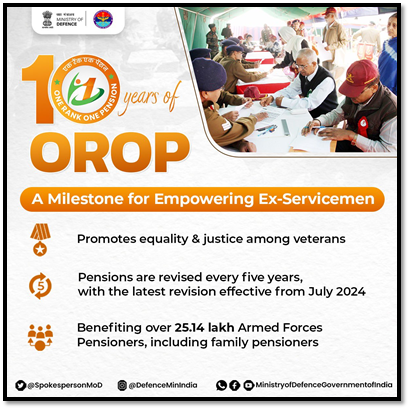
- 08 Nov 2024
In News:
As OROP completes the 10 years in 2024, it is essential to reflect on the immense benefits the scheme has brought to the armed forces community.
Overview:
- Implemented on: November 7, 2015.
- Announced in: Union Budget 2014, allocation of ?1,000 crore.
- Aim: To ensure uniform pension for military personnel retiring at the same rank with equal service duration, irrespective of retirement date.
- Significance: A landmark reform addressing a four-decade-long demand of ex-servicemen.
- Origin: Longstanding demand since the 1970s; first highlighted by the 3rd Central Pay Commission.
- Key Committees: K.P. Singh Dev Committee (1984) and Sharad Pawar Committee (1991) recommended reforms but faced financial and administrative hurdles.
Key Features:
The policy’s primary elements include:
- Re-fixation of Pensions: The pension of all past pensioners is re-fixed based on the pensions of personnel who retired in 2013, starting from July 1, 2014. This created a new benchmark for pensions, with all retirees getting equal benefits for their service.
- Periodic Revision: The pension is to be re-fixed every five years, ensuring that it continues to reflect changes in the pay and pension structure.
- Arrears Payments: Arrears of pension were to be paid in equal half-yearly installments, although the arrears for family pensioners and gallantry awardees were paid in a single installment.
- Safeguarding Above-Average Pension: For personnel drawing pensions higher than the average, their pensions are protected, ensuring that they do not lose out on the benefits of OROP.
- Inclusive of All Ex-Servicemen: The order covered all personnel who retired up to June 30, 2014, and provided a robust framework for revising pensions for all ranks, including family pensioners.
Impact:
- Veterans and Families:
- Benefited over 25 lakh ex-servicemen and families.
- Enhanced financial security, standard of living, and dignity.
- Emotional and Social Value:
- Strengthened trust between veterans and the government.
- Recognized sacrifices of armed forces personnel.
Okinawicius tekdi
- 07 Nov 2024
In News:
Researchers have recently discovered a new species of jumping spider in the Baner Hill area, underscoring the region's rich biodiversity and the growing need to preserve the natural landscapes around Pune.
About Okinawicius tekdi:
- The newly identified species, named Okinawicius tekdi, is a jumping spider that contributes to the growing diversity of India's spider population, now numbering 326 species of jumping spiders.
- The name "tekdi" comes from the Marathi word for "hill," reflecting the spider's habitat.
- The last time a spider species was identified in Pune was over three decades ago.
About Jumping Spiders:
- Jumping spiders belong to the family Salticidae and are known for their distinctive eight legs and remarkable jumping ability.
- These spiders possess a segmented body, a tough exoskeleton, and jointed legs.
- In addition to their agility, they are famous for spinning webs that they use to capture their prey.
World Cities Report 2024
- 07 Nov 2024
In News:
The World Cities Report 2024, released by UN-Habitat, highlights the urgent need for cities to address climate change, both as victims and major contributors.
Key Findings of the Report
- Temperature Increases by 2040: Nearly 2 billion people living in urban areas are projected to face at least a 0.5°C rise in temperature by 2040, exposing them to heatwaves and other climate-related risks.
- Urban Vulnerability and Climate Risk:
- Cities are disproportionately affected by climate change while being major contributors to greenhouse gas emissions, which exacerbates their vulnerability to events like floods, cyclones, and heatwaves.
- The urban population is facing a dual challenge: increased heat and extreme weather events such as flooding, cyclones, and erratic rainfall.
- Sea-Level Rise and Coastal Risks: Over 2,000 cities in low coastal areas, many located under 5 meters above sea level, are at heightened risk from sea-level rise and storm surges, potentially affecting more than 1.4 billion people by 2040.
- Riverine Flooding: Flood exposure in cities is growing 3.5 times faster than in rural areas, with 517 million people in urban areas projected to be exposed to riverine flooding by 2030.
- Investment Gap: Cities require between USD 4.5 trillion and USD 5.4 trillion annually to build and maintain climate-resilient systems, but current investments stand at only USD 831 billion, highlighting a massive funding shortfall.
- Decline in Urban Green Spaces: The average share of urban green spaces has dropped from 19.5% in 1990 to 13.9% in 2020, reducing cities' ability to absorb carbon, manage heat, and provide essential ecosystem services.
- Vulnerable Communities: Informal settlements and slums, often situated in environmentally sensitive areas, are disproportionately affected by climate impacts. These communities lack adequate infrastructure and are often unable to invest in necessary upgrades due to eviction fears or lack of legal recognition.
- Green Gentrification: While climate interventions like park creation can provide environmental benefits, they can also lead to green gentrification—displacing low-income households or increasing property values and rents, thus pricing vulnerable communities out.
Contributing Factors to Urban Global Warming
- Energy Consumption: Urban areas account for 71-76% of global CO? emissions from energy use, driven by dense populations, industrial activities, transportation, and high-energy demand for buildings.
- Industrial Activities: Urban industries and power plants release a variety of greenhouse gases (GHGs), including CO?, methane (CH?), and nitrous oxide (N?O).
- Land Use Changes: Urban expansion leads to deforestation and reduced carbon absorption, contributing to global warming. Urban land areas are expected to more than triple by 2050, accelerating environmental degradation.
- Waste Generation: Decomposing waste in landfills releases methane, a potent GHG, exacerbating the greenhouse effect.
- Urban Heat Island Effect: Urban Heat Islands (UHIs) occur when cities absorb and retain more heat due to their dense infrastructure (asphalt, concrete, and buildings), increasing local temperatures and energy consumption.
Impacts of Global Warming on Cities
- Heatwaves: Cities, especially in warmer regions like India, are experiencing more severe heatwaves and rising temperatures.
- Urban Heat Island Effect: UHIs increase the intensity of heatwaves, particularly in high-density cities, where buildings and roads trap heat, exacerbating energy demands and public health risks.
- Coastal Flooding: Rising sea levels threaten coastal cities with flooding and storm surges, displacing communities and disrupting economies.
- Wildfire Seasons: Warming temperatures and prolonged droughts increase the risk of wildfires in urban areas, particularly in forest-adjacent cities.
India's Climate Initiatives for Urban Areas
- Smart Cities Mission: Focuses on developing sustainable urban infrastructure, promoting smart technologies, and enhancing resilience to climate impacts.
- AMRUT Mission: Aims to provide basic infrastructure and sustainable urban development in cities, including water supply, sewage, and green spaces.
- Swachh Bharat Mission-Urban: Focuses on improving waste management and reducing pollution in urban areas.
- FAME India Scheme (Faster Adoption and Manufacturing of Hybrid and Electric Vehicles): Promotes electric vehicles to reduce urban air pollution and carbon emissions.
- Green Energy Corridor (GEC): Facilitates the integration of renewable energy sources into the national grid, encouraging clean energy use in urban centers.
21st India-US Military Cooperation Group (MCG) Meeting
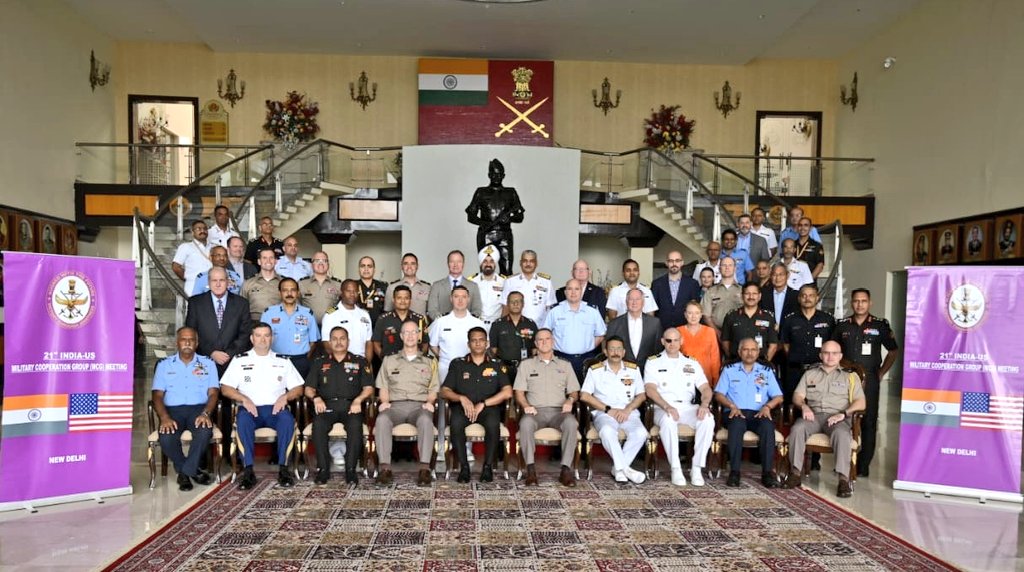
- 07 Nov 2024
In News:
- The 21st India-US Military Cooperation Group (MCG) meeting was held from November 5 to 6, 2024, at the Manekshaw Centre, New Delhi.
- The meeting focused on strengthening defence ties between India and the US, covering a wide range of topics aimed at improving military cooperation.
Key Areas of Discussion
- Capacity Building: The meeting discussed initiatives for enhancing defence capacity through training exchanges, joint exercises, and sharing best practices.
- Defence Industrial Cooperation: Both countries explored opportunities for collaborative defence industrial ventures and technology sharing.
- Joint Exercises: The advancement of joint military exercises was highlighted to boost readiness against both conventional and hybrid threats.
- Strategic Objectives: The meeting aimed to enhance interoperability between the two countries' armed forces, enabling more effective joint operations.
Commitment to Strengthen Indo-US Defence Ties
- Strategic Partnership: Both nations reaffirmed their commitment to strengthening the Indo-US defence partnership, recognizing the shared challenges in the Indo-Pacific region.
- Focus on Regional Security: The discussions underscored the importance of ensuring regional security and global stability in the face of emerging threats.
The Role of the MCG
- Purpose: The MCG forum serves as a key platform for enhancing strategic and operational defence collaboration between India and the US.
- Long-term Goals: The MCG aims to build mutual defence capabilities, counter emerging threats, and ensure the security of both nations and the wider region.
Maha Kumbh Mela 2025
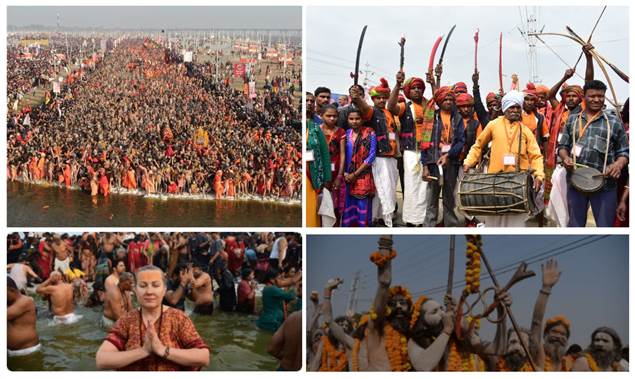
- 07 Nov 2024
In News:
- The Maha Kumbh Mela 2025 will be held in Prayagraj from January 13 to February 26.
- The event is a sacred pilgrimage that draws millions of pilgrims to bathe in the holy waters of the Triveni Sangam (the confluence of the Ganges, Yamuna, and Sarasvati rivers) for spiritual purification and liberation.
Significance and Spiritual Importance
- Sacred Rituals:
- The central ritual is the act of bathing in the holy waters of the confluence, believed to cleanse one’s sins and bring spiritual liberation (Moksha).
- Pilgrims also engage in worship, spiritual discourses, and seek blessings from revered sadhus and saints.
- Auspicious Dates:
- The event includes Shahi Snan (Royal Bath), where prominent saints and their followers bathe on specific dates, marking the beginning of the Mela.
- Paush Purnima marks the start of the auspicious bathing period.
- Cultural Ceremonies:
- The Mela features a grand procession (Peshwai) with Akharas (spiritual orders) on elephants, horses, and chariots.
- Cultural performances, traditional music, dance, and art are also part of the festivities, showcasing India’s vibrant cultural diversity.
Mythological and Historical Roots
- Mythology:
- The Kumbh Mela is deeply embedded in Hindu mythology, symbolizing humanity’s quest for spiritual unity and enlightenment.
- The timing of the event is based on astrological positions of celestial bodies, particularly the Sun, Moon, and Jupiter.
- Historical Significance:
- The origins of the Kumbh Mela trace back over 2,000 years, with references found in the Maurya and Gupta periods.
- Royal Patronage: Emperors like Akbar supported the Mela, symbolizing unity among different religions and cultures.
- British Colonial Era: British officials documented the Mela, fascinated by its scale and ritualistic practices.
- Modern Recognition:
- In 2017, the UNESCO recognized the Kumbh Mela as an Intangible Cultural Heritage of Humanity, underscoring its global significance.
Cultural Celebration and Unity
- Cultural Diversity:
- The Maha Kumbh Mela is a celebration of India's rich cultural heritage, where pilgrims experience traditional crafts, art, music, and dance, alongside spiritual practices.
- International Participation:
- Pilgrims from across the globe attend the Mela, drawn by its message of unity, tolerance, and the universal quest for spiritual growth and peace.
- Message of Unity:
- The Mela serves as a reminder of humanity’s shared desire for self-realization and spiritual fulfillment, transcending national, cultural, and religious boundaries.
PM-Vidyalaxmi Scheme
- 07 Nov 2024
In News:
- The Union Cabinet, chaired by Prime Minister Narendra Modi, approved the PM Vidyalaxmi scheme to provide financial assistance to meritorious students for higher education.
- Objective: The scheme aims to ensure that financial constraints do not hinder students from pursuing quality higher education.
Key Features of the scheme:
- Eligibility:
- Students admitted to top 860 Quality Higher Education Institutions (QHEIs) are eligible.
- Includes both government and private institutions, as per the NIRF (National Institutional Ranking Framework) rankings.
- Loan Provision:
- Collateral-free and guarantor-free education loans for tuition fees and other course-related expenses.
- Loans up to ?7.5 lakhs will have a 75% credit guarantee from the government to encourage banks to offer loans.
- Interest Subvention:
- For students with an annual family income of up to ?8 lakhs (and not eligible for other scholarships or schemes), a 3% interest subvention will be provided on loans up to ?10 lakhs.
- This subvention applies during the moratorium period (when repayment is deferred).
- Preference for interest subvention is given to students in technical/professional courses and those from government institutions.
- Target Beneficiaries:
- Around 22 lakh students are expected to benefit from the scheme annually.
- The government has allocated ?3,600 crore for the period 2024-2025 to 2030-2031, with 7 lakh fresh students anticipated to receive the benefit each year.
- Digital Process:
- A unified “PM-Vidyalaxmi” portal will allow students to apply for loans and interest subvention in a simplified, transparent, and digital manner.
- Payment Method:
- Interest subvention will be paid via E-vouchers or Central Bank Digital Currency (CBDC) wallets.
Loan Product Features
- Collateral-free & Guarantor-free: Loans will be accessible without the need for collateral or a guarantor.
- Loan Coverage:
- The scheme will cover full tuition fees and other related expenses.
- Eligibility Criteria:
- Students enrolled in NIRF top 100 HEIs, state institutions ranked 101-200, and central government institutions are eligible.
- The list of eligible institutions will be updated annually based on the latest NIRF rankings.
Government's Commitment
- The scheme is a part of the National Education Policy 2020’s vision to enhance access to quality education through financial support.
- Additional Support:
- It complements the existing Central Sector Interest Subsidy (CSIS) and Credit Guarantee Fund Scheme for Education Loans (CGFSEL) under PM-USP.
- The CSIS scheme provides full interest subvention for students with an annual family income of up to ?4.5 lakhs, pursuing technical/professional courses.
India-Algeria Strengthen Defence Ties
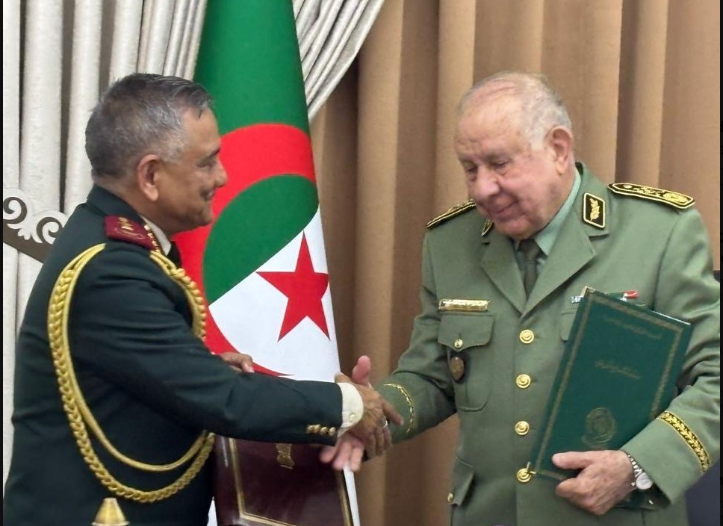
- 06 Nov 2024
In News:
- The Chief of Defence Staff (CDS) of India recently visited Algeria, culminating in the signing of a significant Memorandum of Understanding (MoU) on defence cooperation.
- Objective: The MoU aims to strengthen the strategic and military ties between India and Algeria.
Recent Developments in India-Algeria Relations
- Important Visit: The CDS’s visit coincided with Algeria’s 70th anniversary of its revolution, celebrated on November 1st, with military parades and ceremonies highlighting Algeria’s historical and political legacy.
- Defence Cooperation:
- India re-established its defence wing in Algeria, and Algeria reciprocated by considering the establishment of its defence wing in India.
- India emphasized its role as a “Vishwa Bandhu” (global partner) and offered to share defence expertise and experiences with Algeria.
- Strategic Discussion: The MoU aims to enhance mutual understanding, laying the foundation for long-term defence collaboration across multiple sectors, including manufacturing under India’s 'Make in India' and 'Make for the World' initiatives.
- Global Peace Support: CDS reiterated India’s commitment to peaceful conflict resolution and expressed support for Algeria’s defence interests.
Significant Areas of India-Algeria Relationship
- Diplomatic Relations:
- India and Algeria established diplomatic ties in July 1962, the same year Algeria gained independence from French colonial rule.
- India supported Algeria's liberation movement and both countries have maintained close ties as part of the Non-Aligned Movement.
- Bilateral Trade:
- Trade peaked at USD 2.9 billion in 2018 but dropped to USD 1.5 billion by 2021 due to COVID-19 and Algeria’s import restrictions.
- Trade rebounded in 2022, increasing by 24% to USD 2.1 billion.
- Exports from India (2023-24): Rice, pharmaceuticals, granite.
- Imports from Algeria: Petroleum oils, LNG, calcium phosphates.
- Bilateral Agreements:
- 2015 MoU: Between All India Radio (AIR) and Algerian National Radio for cooperation in broadcasting.
- 2018 Space Cooperation Agreement: Focuses on satellite technology for applications like crop forecasting and disaster management.
- Visa Waiver Agreement (2021): Diplomatic and official passport holders are exempt from visa requirements.
- Cultural Engagement:
- International Day of Yoga (2024): Celebrated in Algeria at the Jardin d’Essai du Hamma, attracting over 300 participants.
- Space Cooperation:
- The 2018 India-Algeria Space Cooperation Agreement focuses on joint space science, technology, and applications.
- India has launched four Algerian satellites (2016), and the 2022 Joint Committee Meeting expanded satellite capacity building efforts.
- Algeria’s space agency has engaged with ISRO on satellite applications like crop forecasting and disaster management.
- Indian Community in Algeria:
- Approximately 3,800 Indians live in Algeria, working in various sectors, including technical and semi-skilled roles.
- The community includes 13 Overseas Citizens of India (OCI), 10 Persons of Indian Origin (PIOs), and 15 Indian students.
Spraying Diamond Dust to cool the Earth
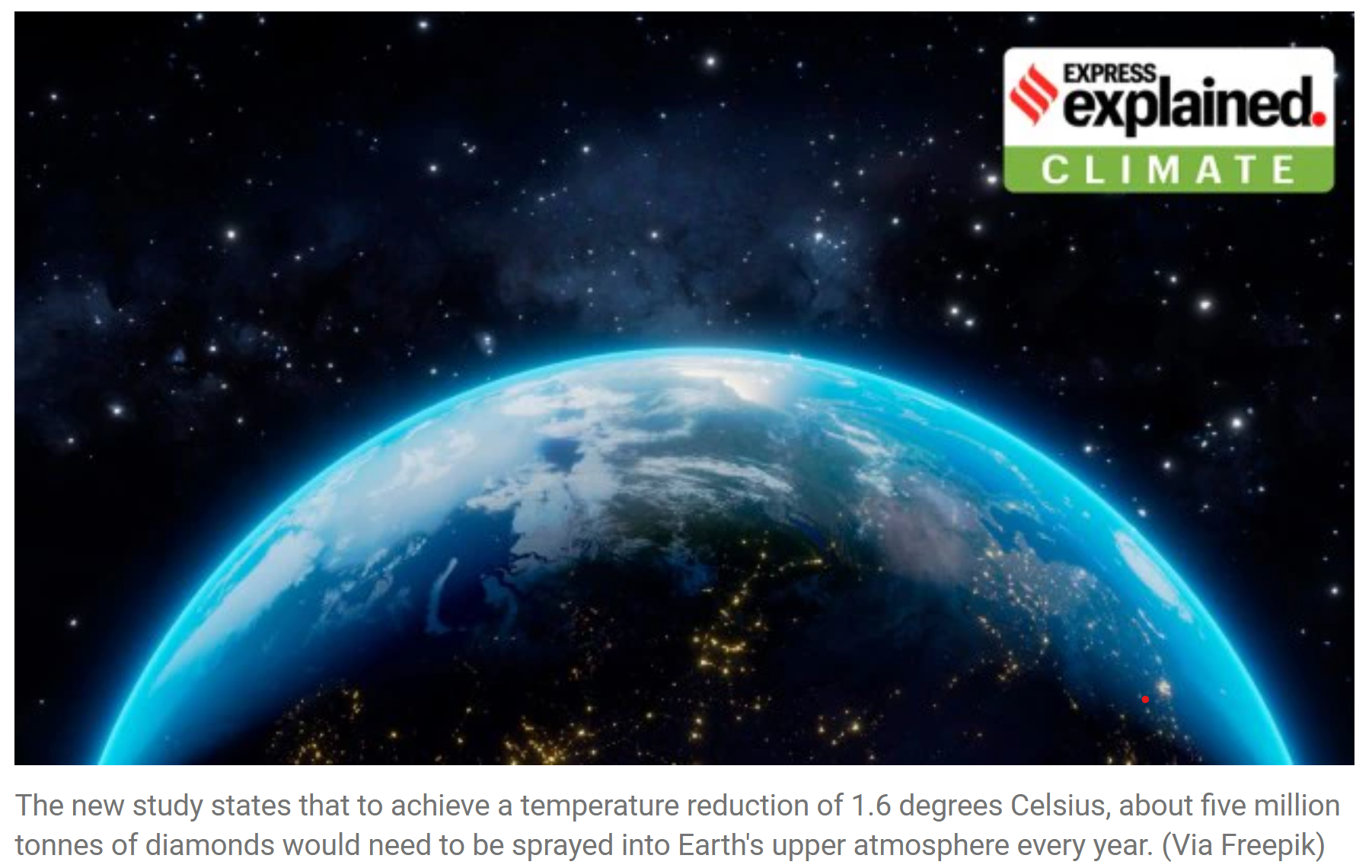
- 06 Nov 2024
In News:
- A new study in Geophysical Research Letters suggests that diamond dust could be more effective than any other material in reflecting solar radiation.
- Objective: The goal is to reduce global temperatures by 1.6°C by spraying approximately 5 million tonnes of diamonds annually into the atmosphere.
Background of Geoengineering Solutions:
- Geoengineering refers to large-scale interventions aimed at altering Earth's natural climate system to counteract global warming.
- One proposed solution involves spraying diamond dust in the Earth's upper atmosphere to cool the planet.
- This approach is part of Solar Radiation Management (SRM), which seeks to reflect sunlight away from Earth, thereby reducing global temperatures.
- Previous Materials Considered: Sulphur, calcium, aluminium, silicon, and other compounds have been studied to perform a similar function.
Context of Geoengineering and Climate Crisis:
- Inadequate Progress: Current efforts to mitigate global warming, such as reducing greenhouse gas emissions, have been insufficient. Global temperatures have continued to rise, and targets like the Paris Agreement's 1.5°C are increasingly out of reach.
- Rising Global Temperatures:
- 2023: Global temperatures were approximately 1.45°C higher than pre-industrial levels.
- Projected Challenge: To meet the Paris goal, global emissions must be reduced by at least 43% by 2030. However, current actions will likely result in only a 2% reduction by 2030.
Geoengineering Technologies:
- Geoengineering Methods:
- Solar Radiation Management (SRM): Reflects sunlight to cool Earth.
- Carbon Dioxide Removal (CDR): Involves capturing and storing CO?.
- SRM Techniques:
- SRM draws inspiration from natural events like volcanic eruptions, where large amounts of sulphur dioxide form particles that reflect sunlight.
- Mount Pinatubo (1991): One of the largest eruptions, which temporarily reduced global temperatures by 0.5°C due to the sulphur dioxide released.
Diamond Dust vs Other Materials:
- Study Comparison: Diamonds were found to be the most effective material compared to other compounds (sulphur, calcium, etc.) for reflecting solar radiation.
- Quantity Needed: To achieve a cooling of 1.6°C, 5 million tonnes of diamonds would need to be dispersed into the upper atmosphere each year.
Broader Geoengineering Context:
- Carbon Capture and Storage (CCS):
- CCS is already in practice, where CO? emissions from industries are captured and stored underground to reduce atmospheric carbon.
- However, CCS faces high costs and scalability issues, and safe storage sites for CO? are limited.
- Direct Air Capture (DAC): A more advanced method where CO? is directly removed from ambient air, but it faces even greater challenges in terms of infrastructure and cost.
VINBAX 2024 Exercise

- 06 Nov 2024
In News:
The 5th Edition of Vietnam Indian Bilateral Army Exercise “VINBAX 2024” had commenced at Ambala.
Key Participants
- Indian Army: A contingent of 47 personnel from the Corps of Engineers, along with personnel from other arms and services.
- Vietnam People's Army: A similar-sized contingent representing Vietnam's military forces.
- Bi-Service Participation: For the first time, personnel from both Army and Air Force of India and Vietnam are participating.
Objectives of VINBAX 2024
- Joint Military Capability Enhancement:
- Focus on enhancing joint military capabilities of both countries, specifically in the deployment of Engineer Companies and Medical Teams.
- Peacekeeping Operations (UN Context):
- The exercise prepares both sides for United Nations Peacekeeping Operations (PKO), under Chapter VII of the UN Charter, which deals with peace enforcement actions.
- Humanitarian Assistance & Disaster Relief (HADR):
- The exercise includes a 48-hour validation exercise with demonstrations of Humanitarian Assistance and Disaster Relief (HADR) operations.
- The HADR component will include equipment displays to assess the technical standards of both contingents while executing disaster relief and humanitarian missions in peacekeeping contexts.
Key Activities & Events
- Field Training Exercise: The exercise includes a field training component, with a larger scope than previous editions, focusing on:
- Engineer Tasks.
- Medical Support.
- Disaster Relief Operations.
- Validation Exercise: A critical 48-hour validation exercise to test the preparedness of the two forces in providing HADR, including:
- Demonstrations of disaster relief operations.
- Equipment displays to showcase capabilities in managing and executing peacekeeping and humanitarian operations.
- Cultural Exchange: The exercise will also provide an opportunity for cultural exchange, where the troops will learn about the social and cultural heritage of each other.
Background of VINBAX
- Inception: VINBAX was first conducted in 2018 as part of the growing defense cooperation between India and Vietnam. The inaugural edition took place in Jabalpur, Madhya Pradesh.
- Alternating Locations: The exercise alternates between India and Vietnam every year.
- Previous Editions:
- 2023 Edition: Held in Vietnam.
- Current Edition: This is the 5th edition, conducted in India (Ambala and Chandimandir).
Indian Defense Engagements in Southeast Asia
- India-Indonesia Joint Special Forces Exercise (Garud Shakti 2024): Held from November 1-12, 2024, in Cijantung, Jakarta, strengthening ties with Indonesian special forces.
- Singapore-India Maritime Bilateral Exercise (SIMBEX 2024): Held from October 23-29, 2024, in Visakhapatnam, focusing on maritime security cooperation in the Indo-Pacific.
Proba-3 Mission

- 06 Nov 2024
In News:
Europe's Proba-3 mission to arrive in India for launch aboard PSLV-XL by ISRO
Key Highlights:
- Objective: The Proba-3 mission, led by the European Space Agency (ESA), aims to observe the Sun’s corona by creating an artificial solar eclipse. This will allow continuous observation of the Sun’s faint outer atmosphere, which is typically only visible during a natural solar eclipse.
- Key Features:
- Artificial Solar Eclipse: The two spacecraft will fly in formation to maintain a shadow between them, enabling the uninterrupted observation of the solar corona.
- Formation Flying: The satellites must maintain a precise formation with an accuracy of one millimetre, equivalent to the thickness of a fingernail.
Mission Details
- Launch Date: Scheduled for December 4, 2024.
- Launch Location: Satish Dhawan Space Centre near Chennai, India.
- Launch Vehicle: The PSLV-XL rocket developed by ISRO will be used for the launch.
- Spacecraft Mass: The combined mass of the two spacecraft is 550 kg.
- Orbit: The spacecraft will be placed in a highly elliptical orbit with a maximum altitude of 60,000 km to facilitate the precise formation flying.
- This high altitude minimizes Earth’s gravitational pull and reduces the amount of propellant required to maintain their positions during the mission.
Mission Significance
- Solar Observation: The primary objective is to observe the Sun’s corona, which has been challenging to study due to its faintness. The artificial eclipse will allow continuous data collection on solar activity.
- Formation Flying: This technology will allow the two satellites to maintain autonomous flight with millimetre-level precision, which is a significant advancement in satellite formation control.
- Six-Hour Observation Windows: Each formation flying session will last for up to six hours, during which the satellites will observe the Sun's corona.
Technological and Scientific Contributions
- ASPIICS Instrument: The ASPIICS (AStronomical PIcture Camera for the Intense Corona of the Sun) will be the mission's primary instrument, developed by the Royal Observatory of Belgium. It will provide crucial data on solar activity and space weather.
- International Collaboration: The mission is a collaborative effort involving 14 ESA member states and various organizations across Europe.
- Mission Control: The mission will be managed from the ESA’s European Space Operations Centre (ESOC) in Belgium, with significant pre-launch training and preparations already underway.
ISRO's Role and Historical Context
- Launch by ISRO: The Proba-3 mission will be ISRO’s first launch for ESA since 2001, marking an important milestone in India-Europe space cooperation.
- PSLV-XL Rocket: ISRO’s PSLV-XL rocket is known for its reliability and capability in deploying satellites into precise orbits. It is well-suited to carry the 550 kg Proba-3 duo into a highly elliptical orbit for the mission.
Minuteman III ICBM
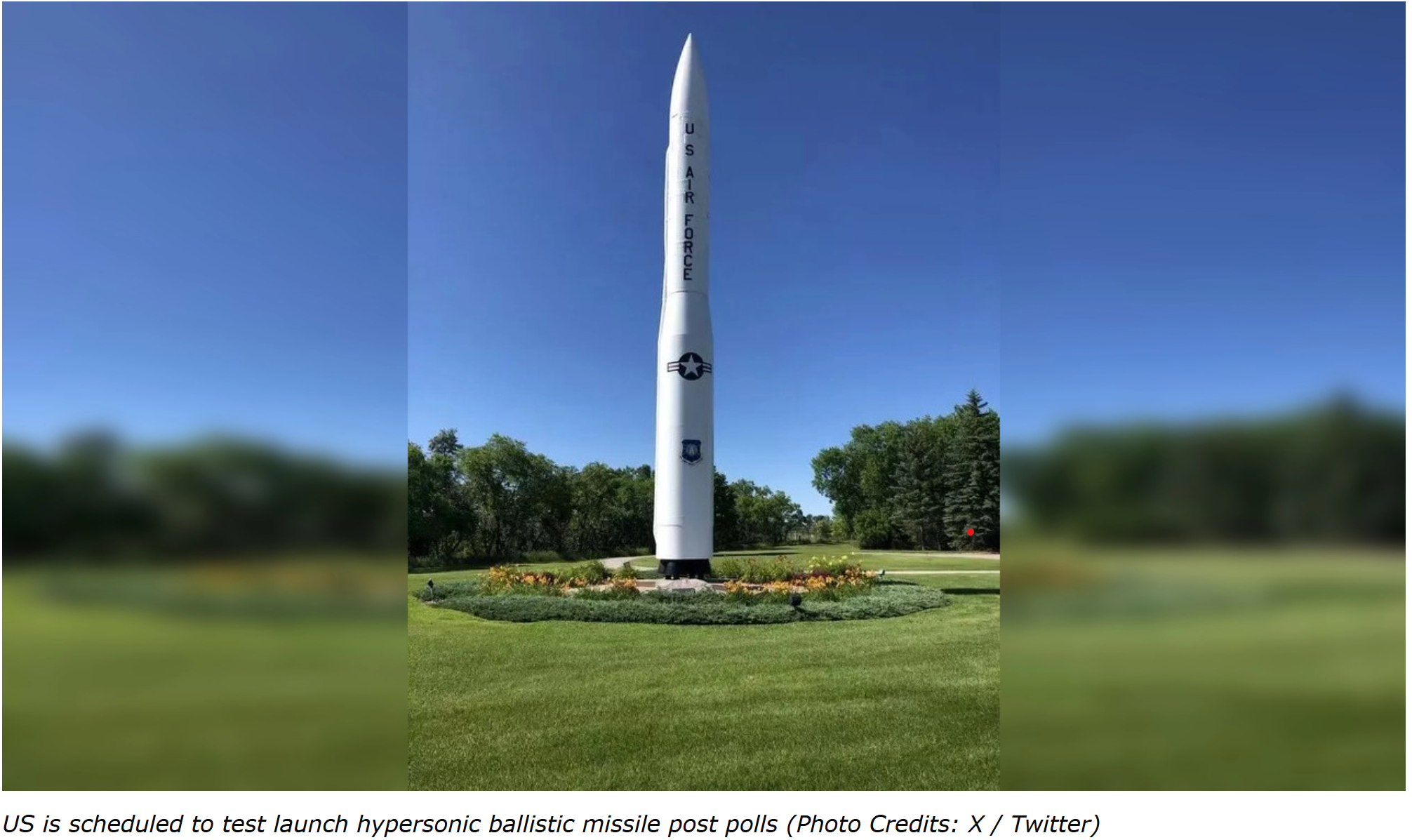
- 06 Nov 2024
In News:
The U.S. Army is scheduled to test launch a Minuteman III ICBM (Intercontinental Ballistic Missile) after the closure of voting on Election Day.
Missile Features
- Speed: Hypersonic, capable of reaching speeds up to 15,000 mph (Mach 23).
- Range: 13,000 km.
- Payload: Currently carries one nuclear warhead (as per arms control agreements with Russia), but originally designed for multiple independently targetable re-entry vehicles (MIRVs).
- Launch Time: Extremely fast, enabling near-instant global retaliation capabilities.
- Testing Reliability: Nearly 100% success rate in tests, with backup airborne launch controllers to ensure continuity of the retaliatory strike capability.
- Length: 18.2 meters.
- Diameter: 1.85 meters.
- Launch Weight: 34,467 kg.
- Type: Three-stage, solid-fuel missile.
Strategic Significance
- Land-Based Nuclear Deterrent: The Minuteman III is a key component of the U.S. nuclear triad, which includes land-based missiles, submarine-launched missiles (SLBMs), and strategic bombers.
- Cost-Effectiveness: The Sentinel weapon system (modernized Minuteman III) is viewed as the most cost-effective option for maintaining the land-based leg of U.S. nuclear deterrence until the planned Ground-Based Strategic Deterrent (GBSD) system replaces it in 2029.
- Global Reach: The missile can strike any target worldwide within minutes, demonstrating U.S. nuclear reach and power projection.
India's Green Leap

- 05 Nov 2024
In News:
India's journey toward a sustainable energy future has gained significant momentum with a series of policy reforms designed to reduce reliance on fossil fuels and accelerate the shift to clean energy. The recent Asia-Pacific Climate Report from the Asian Development Bank (ADB) highlights India's remarkable progress in reforming its fossil fuel subsidy system and its efforts to foster renewable energy, positioning the country as a leader in the region's green transformation.
Key Highlights from the Report:
India's Fossil Fuel Subsidy Reform
- India has successfully reduced fossil fuel subsidies by 85%, from a peak of $25 billion in 2013 to just $3.5 billion by 2023.
- The reform strategy is built on a "remove, target, and shift" approach, which involved phasing out subsidies on petrol and diesel from 2010 to 2014, followed by incremental tax hikes on these fuels through 2017.
- These fiscal changes created space for funding renewable energy projects, such as solar parks, electric vehicle initiatives, and infrastructure improvements.
Role of Taxation in Supporting Clean Energy
- Between 2010 and 2017, India introduced a cess on coal production and imports, which contributed significantly to funding clean energy projects. Approximately 30% of the cess was directed to the National Clean Energy and Environment Fund.
- This funding supported major renewable energy initiatives, including the National Solar Mission and Green Energy Corridor project, helping reduce the cost of utility-scale solar energy and expand off-grid renewable energy solutions.
- The introduction of the Goods and Services Tax (GST) in 2017 altered the financial landscape, redirecting the cess funds to GST compensation rather than directly to clean energy.
Government Schemes and Initiatives
- India is advancing its clean energy agenda through several key government schemes:
- National Green Hydrogen Mission: Aimed at establishing India as a leader in green hydrogen production.
- PM-KUSUM Scheme: Focused on promoting solar energy among farmers, allowing them to produce renewable power.
- PM Surya Ghar: Muft Bijli Yojana: A program designed to provide solar energy access to rural communities, reducing dependency on fossil fuels.
A Strategic Shift: From Subsidies to Clean Energy
- India’s subsidy reforms are an important part of its strategy to transition from a reliance on fossil fuels to a focus on renewable energy investments.
- These changes reflect India’s long-term goal of achieving net-zero emissions by 2070, as outlined in its climate action plans.
Global Significance of India’s Efforts
- The reduction in fossil fuel subsidies and the surge in clean energy investment serve as a model for other nations seeking to balance economic development with climate action.
- India’s approach demonstrates that policy reforms and innovative financing mechanisms can be used to accelerate the transition to a cleaner, greener economy while creating job opportunities and fostering economic growth.
IUCN’s First Global Tree Assessment
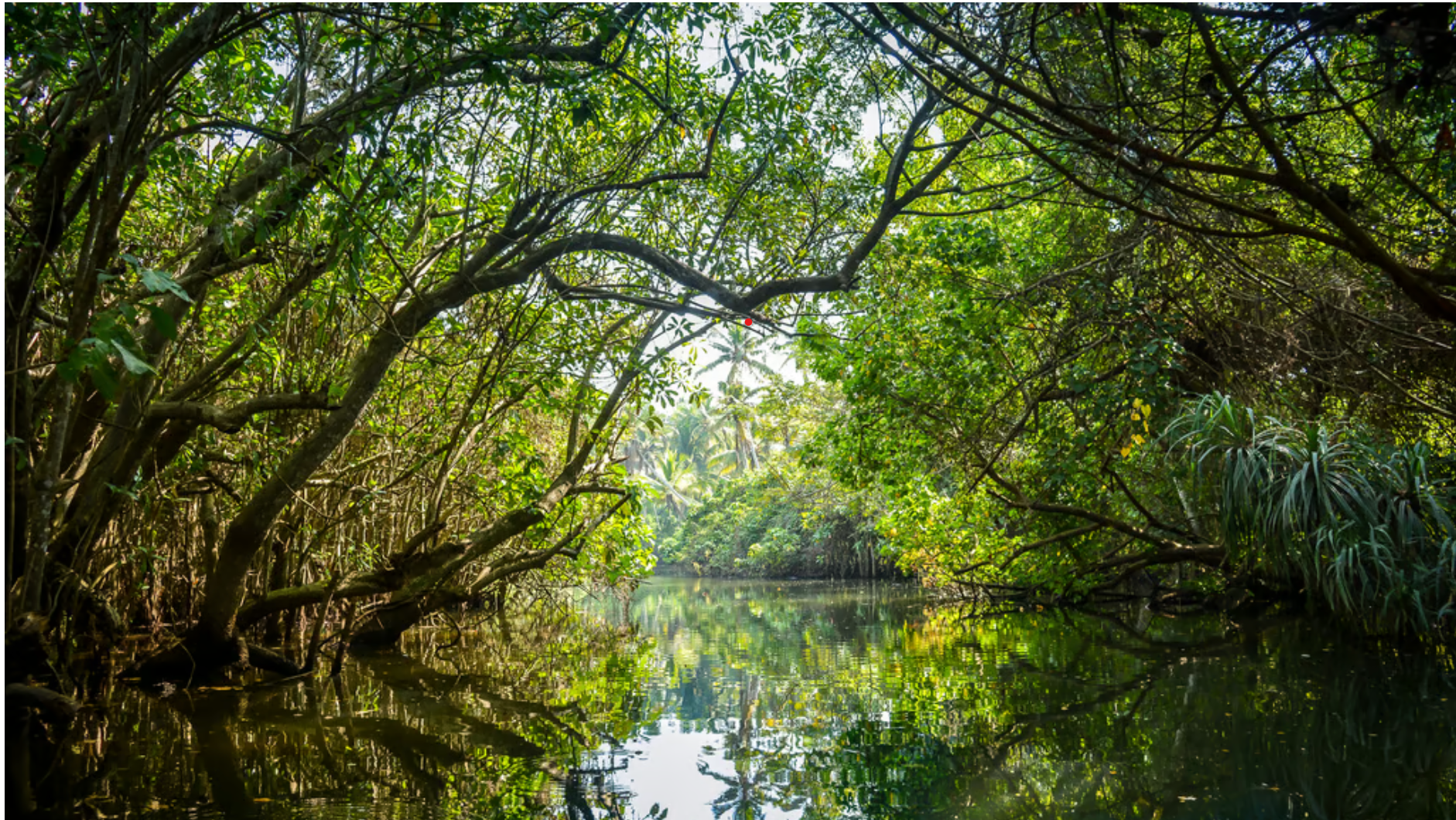
- 05 Nov 2024
In News:
More than one in three tree species threatened with extinction, finds IUCN’s first Global Tree Assessment
Key Highlights:
Global Tree Extinction Risk:
- 38% of the world’s tree species are now facing the risk of extinction — over one in three tree species is at risk.
- This means 16,425 out of 47,282 tree speciesanalyzed by the International Union for Conservation of Nature (IUCN) are under threat.
- Threatened tree species outnumber all threatened birds, mammals, reptiles, and amphibians combined, highlighting the urgent need for conservation action.
Key Drivers of Threat:
- Deforestation: The primary threat to trees is deforestation, driven by agriculture, livestock rearing, and urban development, especially in tropical regions.
- Climate Change: Rising sea levels and increasingly frequent storms exacerbate the threats, particularly in tropical regions and islands.
- Invasive Species & Pests: Non-native species, pests, and diseases are adding pressure to vulnerable tree populations.
Geographic Vulnerabilities:
- Islands are particularly vulnerable, with a high proportion of threatened species due to habitat destruction and urbanization.
- South America, which boasts the highest tree diversity, faces significant threats, with 3,356 out of 13,668 species at risk, mainly due to deforestation for agriculture.
Ecological and Economic Importance of Trees:
- Trees play a fundamental role in carbon, water, and nutrient cycles, and are critical for soil formation and climate regulation.
- The loss of trees poses a growing threat to thousands of other species of plants, fungi, and animals.
- Trees are essential for local communities, providing resources such as timber, medicines, food, and fuel. Over 5,000 species of trees are used for timber and construction, while more than 2,000 species are vital for food, fuel, and medicine.
Conservation Status:
- Tree species are threatened across 192 countries.
- The assessment is the first global analysis of the conservation status of trees, enabling better-informed conservation decisions.
Positive Actions and Strategies:
- Successful community-driven conservation efforts have had positive outcomes in places like the Juan Fernández Islands, Cuba, Madagascar, and Fiji.
- Some countries, including Ghana, Colombia, Chile, and Kenya, already have national strategies for tree conservation.
- Ex-situ conservation, such as seed banks and botanical gardens, is also crucial to safeguard species that may not survive in the wild.
Urgent Call for Action:
The IUCN Global Tree Assessment underlines the urgent need for enhanced conservation efforts, including:
- Habitat protection and restoration.
- Ex-situ conservation through seed banks and botanical gardens.
- Diversified and species-focused reforestation strategies.
- Supporting community-led conservation initiatives to safeguard vulnerable tree species.
Asia-Pacific Climate Report 2024
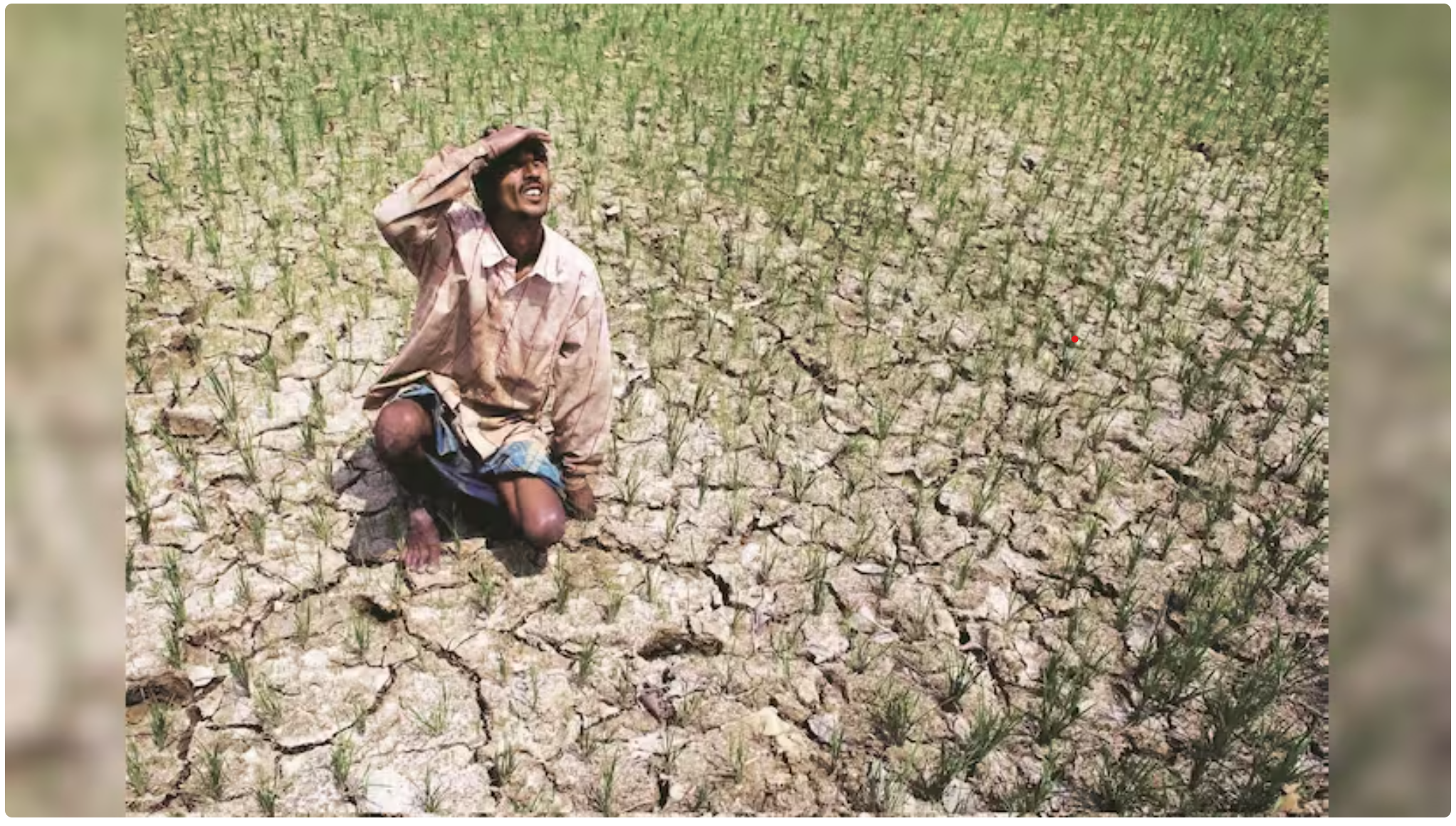
- 05 Nov 2024
In News:
Climate change to put APAC GDP on thin ice with 41% melt by 2100.
Key Highlights:
- Economic Losses Due to Climate Change:
- APAC Region: High-end greenhouse gas emissions could reduce GDP by 17% by 2070 and 41% by 2100.
- India: Projected to experience a 24.7% GDP loss by 2070, with neighboring countries like Bangladesh (30.5%), Vietnam (30.2%), and Indonesia (26.8%) facing even steeper declines.
- Major Drivers of Economic Losses:
- Sea-Level Rise: Up to 300 million people at risk of coastal flooding by 2070. Annual damages could reach $3 trillion by 2070.
- Labour Productivity: The APAC region could lose 4.9% of GDP from reduced labour productivity, with India facing a sharper 11.6% loss.
- Cooling Demand: Rising temperatures could reduce regional GDP by 3.3%, but India's cooling demands could cut its GDP by 5.1%.
- Flooding and Storms: Increased rainfall and storm intensity will exacerbate flooding and landslides, particularly in mountainous regions like the India-China border, where landslides could rise by 30-70% under severe warming.
- Impact on Key Sectors:
- River Flooding: By 2070, annual riverine flooding could cause $1.3 trillion in damages across the APAC, affecting over 110 million people. India could face over $1,100 billion in flood-related damages annually.
- Forest Productivity: Climate change could reduce forest productivity by 10-30% by 2070 across APAC. India could see losses over 25%, making it one of the hardest-hit countries, alongside Vietnam and Southeast Asia.
- Climate Risks and Vulnerabilities:
- Coastal Flooding: Coastal flooding could lead to widespread economic damage, with India expected to suffer significant losses, particularly in coastal areas.
- Ecosystem Threats: Intensified storms, rainfall, and landslides will affect ecosystems, forests, and agriculture across the region.
- Climate Change and Adaptation Needs:
- Investment Requirements: Developing Asia requires $102–431 billion annually for climate adaptation, far exceeding the $34 billion tracked from 2021 to 2022.
- Private Investment: The report highlights the need for greater private climate investment and regulatory reforms to attract capital for adaptation initiatives.
- Renewable Energy: APAC is well-positioned to embrace renewable energy for a net-zero transition, and the use of carbon markets could help achieve climate goals cost-effectively.
- Regional Net-Zero Goals and Progress:
- Net-Zero Targets: 36 out of 44 Asian economies have set net-zero emissions targets, but only 4 have legally committed to these goals. India and China target 2070 and 2060, respectively, while many OECD countries aim for 2050 targets.
- Policy Gaps: Developing Asia needs clearer policies and increased financing to meet climate ambitions. Institutions like ADB are crucial in supporting these efforts.
- Action Plan for the Future:
- Urgent Climate Action: The report stresses the importance of coordinated action to address escalating climate risks.
- Enhanced Adaptation Finance: There is a need to scale up adaptation-focused finance to tackle the growing climate challenges facing the region.
India's Vulnerability and Climate Challenges:
- Labour Impact: India is expected to experience a 11.6% GDP loss due to declining labour productivity, the highest among APAC countries.
- Cooling Demands: A 5.1% reduction in GDP due to increased cooling demand.
- Flood Damage: India’s flood-related losses could surpass $1.1 trillion annually by 2070, with damages to residential and commercial properties.
Bob Khathing

- 05 Nov 2024
In News:
- Defence Minister Rajnath Singh inaugurated the Major Ralengnao 'Bob' Khathing Museum of Valour in Tawang, Arunachal Pradesh, on October 31, 2023, coinciding with National Unity Day (Sardar Vallabhbhai Patel's birth anniversary).
- Significance: The museum honours Bob Khathing's contributions to India's security and the integration of Tawang into India.
Role in the Integration of Tawang:
- Tawang Expedition (1951): In January 1951, Major Bob Khathing, an officer of the Indian Frontier Administrative Service, led the expedition to peacefully integrate Tawang into India.
- Strategic Importance: At the time, there were concerns over Chinese intentions to enter Tibet and realign boundaries. Khathing's mission was crucial to prevent Chinese advances into the area.
- Expedition Details: Khathing set off with Assam Rifles troops from Charduar, Assam, and after overcoming extreme terrain and weather, he reached Tawang. On February 14, 1951, he hoisted the Indian flag, marking Tawang's official integration into India.
- Administrative Setup: Khathing established an administrative framework, including appointing Gaon Buras (village elders) to manage local governance.
Military Service and Recognition:
- World War II Service: Bob Khathing joined the Indian Army in 1939 and earned recognition for his role in the Second World War. He was awarded the Member of the British Empire (MBE) and the Military Cross (MC) for his bravery and leadership.
- Guerrilla Warfare: Khathing was part of the Victor Force, a British-led guerrilla unit tasked with countering the Japanese in Burma and India during WWII. Later, he became the adviser to SANCOL, a force set up to track Japanese forces in the region.
- Military Cross Citation: Khathing was praised for his tireless efforts in organizing local Naga support, gathering intelligence, and participating in successful ambushes, which played a critical role in defeating the Japanese.
Post-War Career and Civil Service:
- Ministerial Role in Manipur: After WWII, Khathing was demobilized and joined the interim government of Manipur, where he served as a minister in charge of the hill areas.
- Integration of Manipur: Following Manipur's merger with India in 1949, Khathing joined the Assam Rifles and served for two years before moving into civil administration.
- Key Positions: He served as Deputy Commissioner of Mokokchung (Nagaland), Development Commissioner in Sikkim, and Chief Secretary of Nagaland.
- Ambassadorship: In 1975, Khathing became India's ambassador to Burma, possibly the first person of tribal origin to hold such a position in independent India.
The Importance of His Contributions:
- Integration of Border Areas: Khathing’s role in integrating Tawang and securing India's northeastern frontier was pivotal in preventing further territorial disputes, especially with China.
- Institutional Development: He helped establish military and security institutions, including the Sashastra Seema Bal, Nagaland Armed Police, and the Naga Regiment, which played important roles in maintaining peace and security in the region.
- Heroic Leadership: Khathing's leadership, both as a soldier and civil servant, continues to be celebrated, symbolized by the Major Bob Khathing Museum of Valour.
NAMO DRONE DIDI

- 05 Nov 2024
In News:
Department of Agriculture & Farmers’ Welfare has released the Operational Guidelines of Central Sector Scheme “NAMO DRONE DIDI”
Key Highlights:
Objective:
- Empower women through Self-Help Groups (SHGs) by providing drones for agricultural rental services.
- Aim to support 14,500 SHGs from 2024 to 2026.
Scheme Overview:
- Type: Central Sector Scheme, under the Deendayal Antyodaya Yojana – National Rural Livelihood Mission (DAY-NRLM).
- Ministry: Ministry of Agriculture & Farmers Welfare.
- Target: Women SHGs for providing drone services in agriculture (e.g., nutrient and pesticide spraying).
Key Features:
- Financial Assistance:
- 80% subsidy (up to ?8 lakh) for SHGs to purchase drones.
- Loans for the remaining 20% via the National Agriculture Infra Financing Facility (AIF) with 3% interest subvention.
- Drone Package:
- Includes drones, spray assemblies, batteries, cameras, chargers, and measurement tools.
- Additional batteries and propellers allow up to 20 acres of coverage per day.
- Training Program:
- One SHG member will be selected for 15 days of mandatory training.
- Focus on drone operation and agricultural tasks (nutrient and pesticide spraying).
- Implementation & Oversight:
- Central Governance: Empowered Committee comprising secretaries from key ministries (Agriculture, Rural Development, Fertilizers, Civil Aviation, and Women and Child Development).
- State Level: Lead Fertilizer Companies (LFCs) will implement the scheme in coordination with state departments and SHG federations.
- Monitoring: IT-based Management Information System (MIS) through the Drone Portal for real-time tracking and fund disbursement.
- Financial Flexibility:
- SHGs can access loans through other Ministry of Rural Development schemes if needed.
Implementation Details:
- Governance: Central level oversight by the Empowered Committee and state-level execution by Lead Fertilizer Companies (LFCs).
- Ownership: Drones procured by LFCs will be owned by SHGs or their Cluster Level Federations (CLFs).
- Monitoring: The scheme will be tracked and managed through the Drone Portal, ensuring transparency and accountability.
LignoSat

- 04 Nov 2024
In News:
The world's first wooden satellite, LignoSat, is set to launch from the Kennedy Space Center aboard a SpaceX rocket. This pioneering satellite is a collaborative effort between Kyoto University and Sumitomo Forestry Co., marking a significant step towards exploring more sustainable materials in space exploration.
Key Highlights:
- Purpose:The primary goal of LignoSat is to test the viability of using wood in space technology, with a focus on the eco-friendliness and cost-effectiveness of using renewable materials in satellite construction. The satellite will be tested aboard the International Space Station (ISS) to assess its durability, strength, and ability to withstand extreme space conditions.
- Material:The satellite is crafted from magnolia wood, chosen for its durability and adaptability. Magnolia was selected for its strength, making it a suitable candidate to endure the harsh conditions of space travel and the intense environmental factors faced in space exploration.
- Mission Details:Once launched, LignoSat will be sent to the ISS, where it will be released from the Japanese Experiment Module (Kibo). Researchers will collect data on the satellite’s performance, examining its ability to handle the challenges of space, including temperature fluctuations and physical strain.
- Environmental Benefits:One of the key advantages of wooden satellites is their environmental impact. Traditional metal satellites, when re-entering the Earth's atmosphere, can generate metal particles that contribute to air pollution. In contrast, wooden satellites like LignoSat are designed to be eco-friendly during reentry. Wood is a natural material that burns up more cleanly during reentry, reducing the potential for harmful atmospheric pollution.
Tumaini Festival
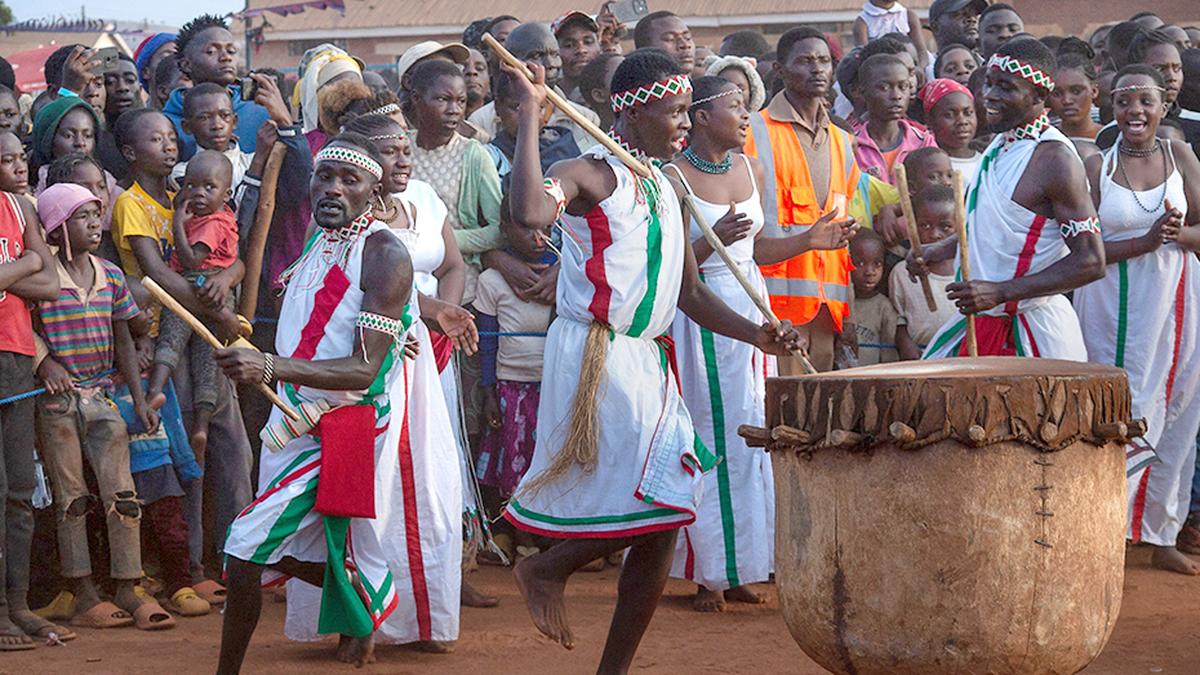
- 04 Nov 2024
In News:
- The Tumaini Festival is held annually in the Dzaleka Refugee Camp in Malawi, one of the world’s few music festivals hosted within a refugee camp. It brings together refugees and locals for cultural exchange, showcasing music, art, and crafts.
- Dates: The festival runs from Thursday to Saturday each year, typically in November.
- Founded: In 2014 by Congolese poet Menes La Plume.
Festival Highlights:
- The festival features performances from a diverse range of artists, including refugees and local Malawians, as well as artists from South Africa, Zimbabwe, and beyond.
- In 2024, performances included Jetu, a 72-year-old singer, and Vankson Boy V, a Congolese refugee, alongside other acts like Maveriq Mavo from South Africa.
- The festival aims to:
- Celebrate cultural exchange and community solidarity between refugees and locals.
- Humanize the refugee experience by allowing refugees and locals to share common experiences and celebrate cultural diversity.
- Challenge stereotypes by showing refugees as people with the same aspirations, talents, and desires as locals.
Significance of Dzaleka Refugee Camp:
- Location: Situated near Lilongwe, Malawi, Dzaleka was originally a prison before becoming a refugee camp in 1994.
- Capacity: Initially designed for 10,000 refugees, the camp now hosts over 60,000 individuals from countries like Democratic Republic of Congo (DRC), Rwanda, Burundi, Ethiopia, and Somalia.
- Role: Dzaleka has evolved into a hub for humanitarian aid, cultural exchange, and empowerment of its residents.
First Science Result from India's Aditya-L1 Mission
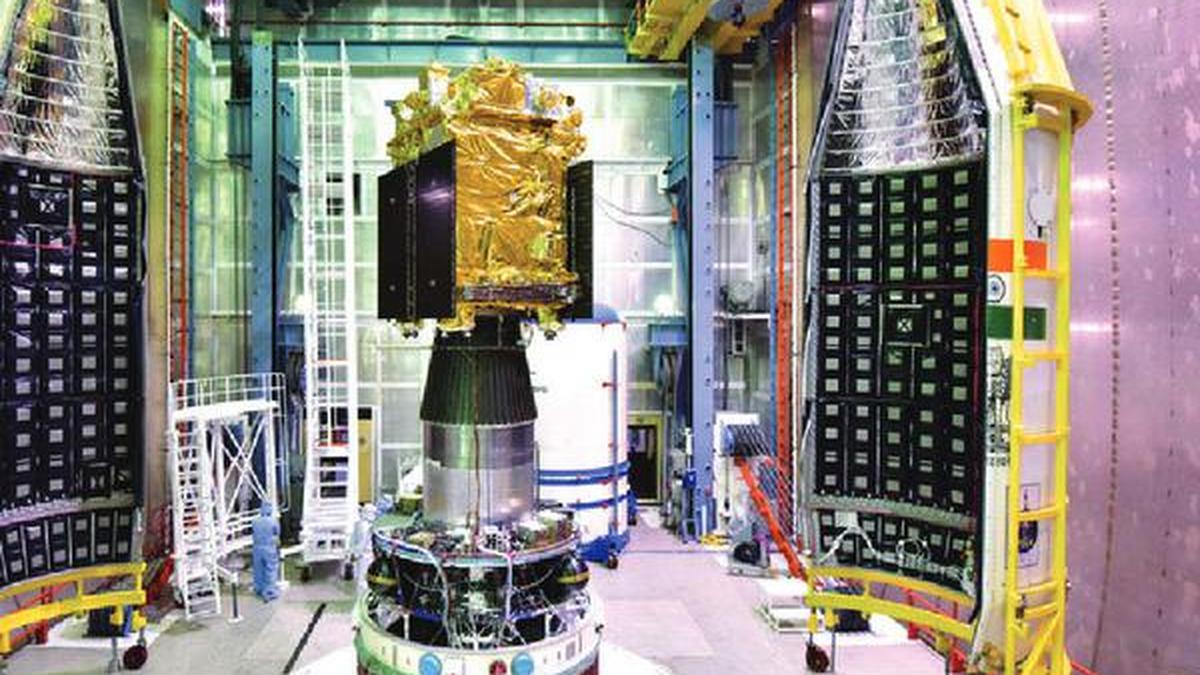
- 04 Nov 2024
In News:
- The Aditya-L1 mission, launched by the Indian Space Research Organisation (ISRO) on September 2, 2023, is India's first dedicated scientific mission to study the Sun.
- Primary Payload: The Visible Emission Line Coronagraph (VELC), developed by the Indian Institute of Astrophysics (IIAp), Bengaluru, is the spacecraft's main instrument.
Key Highlights:
- First Science Outcome:The first scientific result from the mission, involving VELC, has been released. It successfully estimated the onset time of a coronal mass ejection (CME) that occurred on July 16, 2023.
- CMEs are massive solar eruptions that can disrupt electronics in satellites and communications on Earth.
- Key Findings:
- VELC's Role: The VELC payload was crucial in observing the CME close to the solar surface, providing a detailed understanding of its onset.
- CMEs are typically observed in visible light after they have traveled far from the Sun. However, VELC’s unique spectroscopic observations allowed scientists to study the CME much closer to the Sun's surface.
- Publication:The results will be published in the Astrophysical Journal Letters.
- Future Significance:
- As the Sun approaches the maximum phase of its current solar cycle (No. 25), CMEs are expected to become more frequent. Continuous monitoring with VELC will provide valuable data for understanding these events.
- Monitoring the thermodynamic properties of CMEs near the Sun is essential to understand their source regions and behavior.
- Mission Details:
- The spacecraft is in a halo orbit around the Lagrange Point 1 (L1), about 1.5 million kilometers from Earth.
- Mission Lifetime: 5 years.
First Asian Buddhist Summit in New Delhi
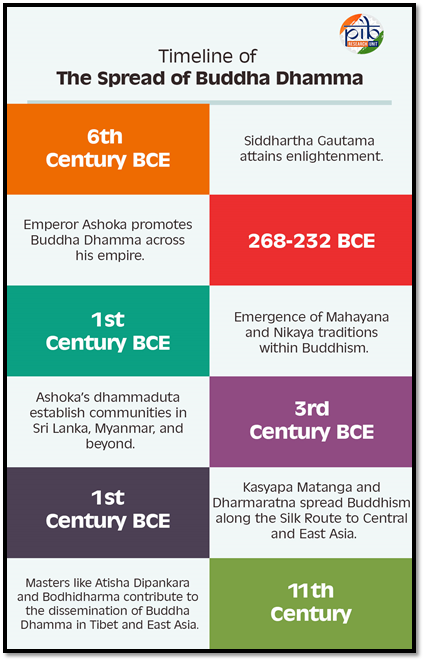
- 04 Nov 2024
In News:
- The Government of India, in partnership with the International Buddhist Confederation (IBC), is hosting the First Asian Buddhist Summit in New Delhi.
- Theme: "Role of Buddha Dhamma in Strengthening Asia."
- Significance: The summit aligns with India’s Act East Policy, focusing on collective, inclusive, and spiritual development across Asia.
- Inauguration: The two-day event will be inaugurated by President Droupadi Murmu on November 5, 2024.
- Participants: Buddhist Sangha leaders, scholars, and practitioners from various Asian Buddhist traditions will gather to promote dialogue, understanding, and address contemporary challenges within the Buddhist community.
Key Themes of the Summit
- Buddhist Art, Architecture, and Heritage
- Focus on preserving and celebrating Buddhist landmarks in India (e.g., Sanchi Stupa, Ajanta Caves).
- Emphasizes the role of Buddhist art in fostering cross-cultural understanding.
- Buddha C?rik? and Dissemination of Buddha Dhamma
- Discusses Buddha’s journeys and how his teachings spread across India and beyond.
- Role of Buddhist Relics in Society
- Relics serve as symbols of Buddha's teachings, promoting devotion, mindfulness, and economic benefits through tourism and pilgrimages.
- Buddha Dhamma in Scientific Research and Well-Being
- Exploration of Buddhist teachings on mindfulness and compassion, and their integration into contemporary scientific practices to enhance well-being.
- Buddhist Literature and Philosophy in the 21st Century
- Delving into timeless Buddhist wisdom that continues to address the human condition, the nature of reality, and paths to enlightenment.
- Exhibition: "India as the Dhamma Setu (Bridge) Connecting Asia," showcasing India's role in the spread of Buddhism and its significance in fostering unity.
India’s Role in Promoting Buddhist Heritage
- Cultural Identity: Buddhism is integral to India's cultural fabric, influencing its national identity and foreign policy.
- Buddhist Tourism Circuit: The Indian government has developed a Buddhist Circuit covering key sites such as Bodh Gaya, Sarnath, and Kapilvastu.
- International Conferences and Symposia: India has hosted several events, including the First Global Buddhist Summit (2023), International Abhidhamma Diwas (2024), and Symposiums on Vipassana Meditation.
- Pali Language Recognition: On October 4, 2024, Pali was granted classical status, recognizing its significance in conveying Buddha’s teachings.
Buddhism’s Influence in Asia
- Historical Context: Buddhism, founded by Siddhartha Gautama in the 6th century BCE, spread across Asia with the support of figures like Emperor Ashoka (268-232 BCE), who promoted peace and harmony through Buddhist teachings.
- Spread of Buddhism: From its origins in India, Buddhism spread to Central Asia, East Asia, and Southeast Asia, adapting to local cultures and creating diverse schools: Theravada, Mahayana, and Vajrayana.
Ningol Chakkouba Festival

- 04 Nov 2024
In News:
Ningol Chakkouba is one of the biggest festivals of Manipur, primarily celebrated by the Meitei community, but over the years, it has seen participation from various communities.
Key Highlights:
- Date: The festival is celebrated annually on the second day of the lunar month of Hiyangei in the Meitei calendar.
- Main Celebration: The central tradition involves married sisters visiting their maternal homes for a grand feast, joyous reunion, and the exchange of gifts.
- Customary Invitation: A week before the festival, the son of the family formally invites his married sisters to join the celebration.
- Expansion of Celebration: While traditionally celebrated in Manipur, Ningol Chakkouba is now observed in other states and even outside India, where Manipuris are settled.
- Meaning of Ningol Chakkouba:
- Ningol means ‘married woman’.
- Chakouba means ‘invitation for feast’.
- Thus, the festival is a celebration where married women are invited to their parents' home for a special meal.
- Inclusion of Other Communities: Although originally a Meitei tradition, Ningol Chakkouba is now celebrated by various communities due to its emphasis on family reunion, happiness, and promoting peace and harmony in society.
- Cancellation in 2023: The festival was not held in the previous year due to ethnic violence in the state.
Kodo Millet
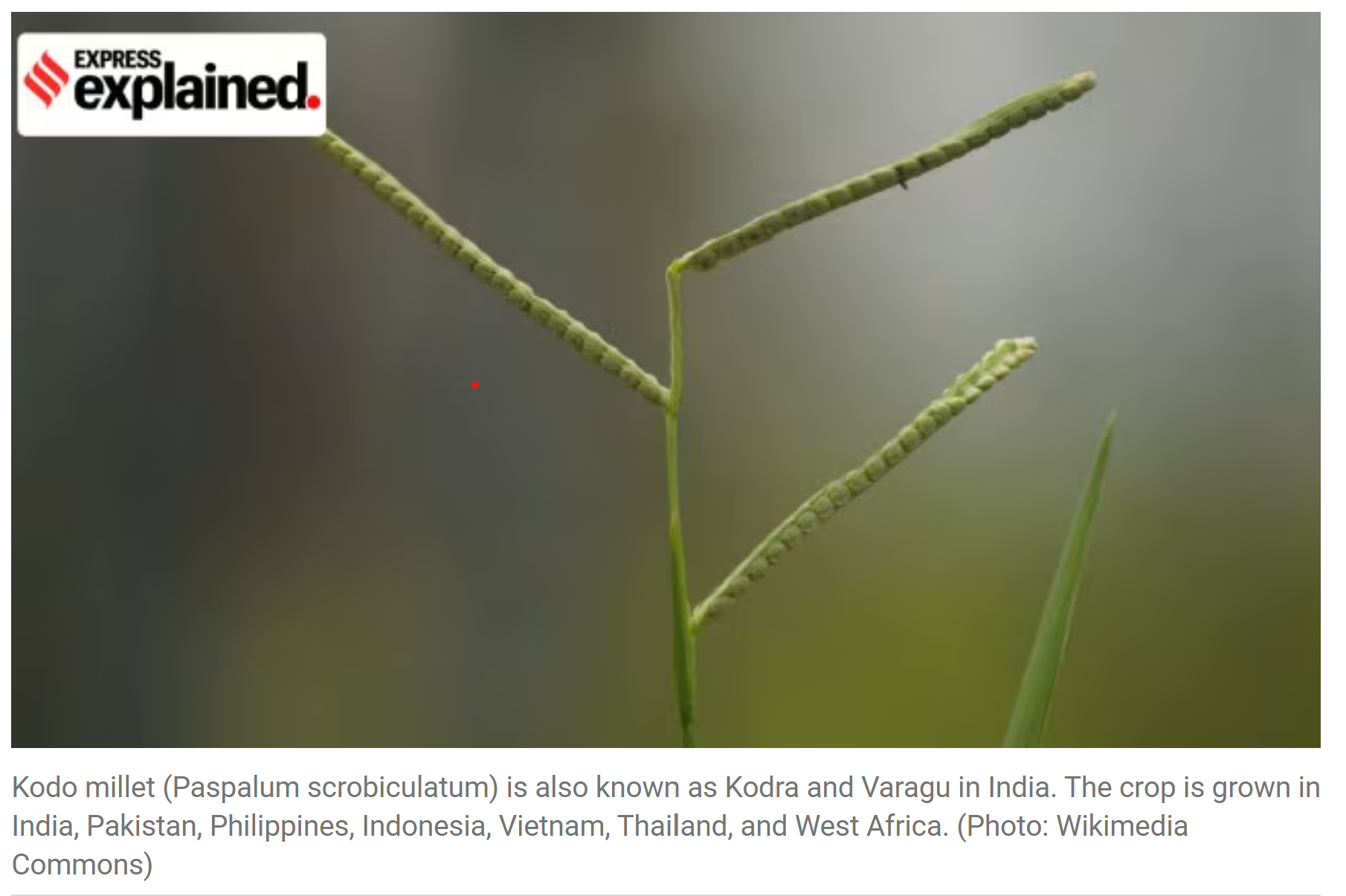
- 03 Nov 2024
In News:
Kodo millet is a staple food for many tribal and economically weaker sections in India. It is one of the 'hardiest crops, drought tolerant with high yield potential and excellent storage properties,' according to researchers
Background on Kodo Millet:
- Kodo millet (Paspalum scrobiculatum), also known as Kodra or Varagu, is a hardy, drought-tolerant crop widely grown in India, especially in Madhya Pradesh.
- It is a staple food for many tribal and economically weaker sections of India and is used to make various dishes like idli, dosa, and rotis.
- Kodo millet is valued for its high yield, nutritional benefits (rich in vitamins, minerals, antioxidants), and storage properties.
Incident in Bandhavgarh Tiger Reserve:
- 10 elephants from a herd of 13 died over three days in Madhya Pradesh’s Bandhavgarh Tiger Reserve.
- The cause of death was suspected to be mycotoxins associated with kodo millet, particularly Cyclopiazonic Acid (CPA), which is toxic to animals.
Historical Cases of Kodo Poisoning:
- The first human cases of kodo poisoning were reported in 1922 in the Indian Medical Gazette.
- Animals, including elephants, have also been affected by kodo millet consumption, with documented deaths as early as 1983.
- Cyclopiazonic Acid (CPA), a mycotoxin, was identified as the cause of kodo poisoning in the 1980s.
Why Does Kodo Millet Become Poisonous?
- Kodo millet is grown in dry and semi-arid regions and is vulnerable to fungal infections, particularly Ergot fungus, which produces CPA.
- When the crop encounters rainfall during maturing and harvesting, fungal infection can lead to "poisoned kodo," known locally as 'Matawna Kodoo' or 'Matona Kodo'.
- The mycotoxins in the infected millet are stable and resistant to standard food processing techniques.
Impact of Mycotoxins on Animals:
- Symptoms of poisoning: Vomiting, giddiness, unconsciousness, rapid pulse, cold extremities, limb tremors.
- Nervous and cardiovascular systems are primarily affected, causing liver dysfunction, heart damage, and gastrointestinal issues.
- In severe cases, consumption of infected kodo millet can cause death due to cardiovascular collapse and organ failure.
- Similar symptoms of depression and loss of mobility were observed in animal studies, including in mice.
Solution to Kodo Toxicity:
- Biocontrol agents (organisms that fight harmful pathogens) can help reduce fungal growth and mycotoxin production in kodo millet.
- Good agricultural practices: Sorting, proper storage in airtight containers, and avoiding moisture exposure during threshing can minimize contamination.
- Post-harvest management: Removing infected grains is crucial to preventing the spread of the disease.
Detection of Mycotoxins in Kodo Millet:
- Challenges: Mycotoxins are often undetectable by sight, and traditional methods like chromatography are time-consuming.
- Rapid detection tools: Enzyme-linked immunosorbent assays (ELISA), lateral flow assays (LFAs), and biosensors offer faster, on-site methods for detecting mycotoxins in kodo millet.
Centre for Science and Environment
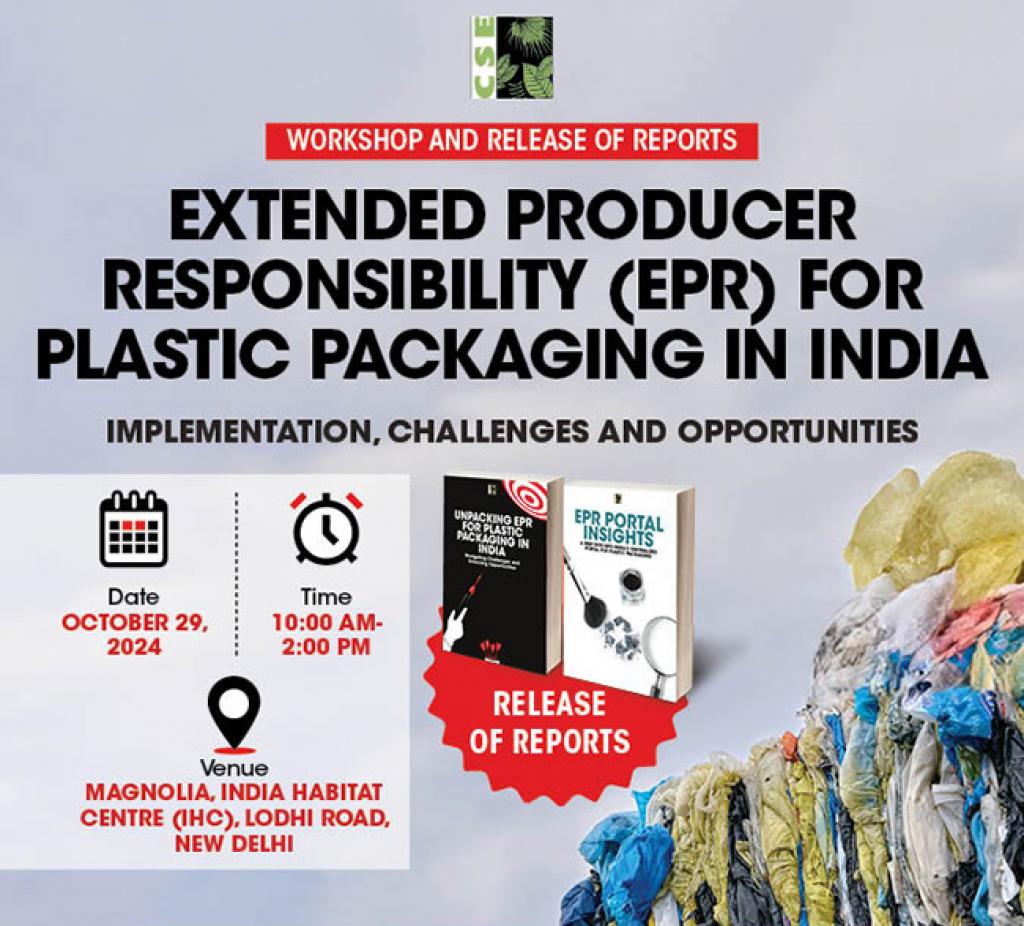
- 03 Nov 2024
In News:
Centre for Science and Environment release a report on Extended Producer Responsibility (EPR) for Plastic Packaging
Key Findings:
- EPR Guidelines (2022) were a step towards enforcing the "polluter pays" principle, but the system faces significant issues in its implementation and registration processes.
- Centre for Science and Environment (CSE) report, released on October 29, 2024, highlights gaps in the EPR system for plastic packaging and suggests corrective actions.
EPR Guidelines Overview:
- Issued by: Union Ministry of Environment, Forest and Climate Change (MoEFCC).
- Objective: Hold producers, importers, brand owners (PIBOs), and plastic waste processors (PWPs) responsible for managing plastic packaging waste.
- Key Requirements:
- PIBOs must register on a centralized portal and set targets for collection, recycling, and reuse of plastic packaging.
- Registration involves compliance with targets on end-of-life recycling and recycled content usage.
Problems Identified in the Current EPR System:
- Low Registration and Enrollment:
- 41,577 registrations on the EPR portal, but a significant discrepancy in the type of stakeholders registered.
- 83% of registered entities are importers, 11% are producers, and only 6% are brand owners.
- Producers contribute 65% of the plastic packaging in the market but have low registration.
- Absence of Key Polluters:
- Manufacturers of virgin plastics are notably absent from the portal, despite being required to register.
- Fraudulent Practices:
- 700,000 fake certificates were generated by plastic recyclers, far exceeding the actual certificate generation capacity.
- The Central Pollution Control Board (CPCB) found that such fraudulent activities are undermining the integrity of the system.
- For example, end-of-life co-processing units (e.g., cement plants) claimed to have processed 335.4 million tonnes per annum of plastic waste, while their actual capacity is just 11.4 million tonnes per annum.
- Underreporting and Mismanagement:
- Despite 23.9 million tonnes of plastic packaging being introduced into the market, the CPCB’s estimation of plastic waste generation (4.1 MT annually) is underestimated.
- Lack of Stakeholder Representation:
- Urban local bodies and informal waste collectors—key contributors to plastic waste management—are not included in the EPR framework, which limits their incentives and support.
Recommendations for Improvement:
- Incorporate the Informal Sector:
- Recognize informal waste collectors and waste management agencies in the EPR framework to improve traceability and ensure better waste management.
- Eliminate Fraudulent Practices:
- Strict actions need to be taken against fraudulent recyclers and fake certificate issuers to restore credibility to the EPR system.
- Establish Fair Pricing for EPR Certificates:
- Undertake baseline cost studies to determine the true costs of plastic waste management, ensuring fair pricing for recycling certificates and preventing undervaluation.
- Standardize Packaging:
- Focus on product standardization to ensure that packaging materials are uniform and easily recyclable.
- Strengthen Monitoring:
- Improve oversight on the registration process and ensure that all polluters (producers, importers, brand owners) comply with the system’s guidelines.
EPR and Plastic Waste Management: Context and Importance
- Extended Producer Responsibility (EPR) is a policy approach where the responsibility of managing the entire lifecycle of plastic products (from production to disposal) lies with the producer.
- It is an essential part of India’s Plastic Waste Management Rules (2016), which mandate the recycling and proper disposal of plastic packaging waste.
Key Elements of EPR:
- Producer Accountability: Producers are responsible for the take-back, recycling, and final disposal of plastic packaging.
- Waste Minimization: Encourages reducing waste at the source by promoting sustainable packaging designs.
- Lifecycle Approach: Considers the entire lifecycle of the product, focusing on sustainability from production to disposal.
- Polluter Pays Principle: Ensures that the cost of waste management is borne by those responsible for generating the waste.
National Biodiversity Strategy and Action Plan (NBSAP) 2024-2030
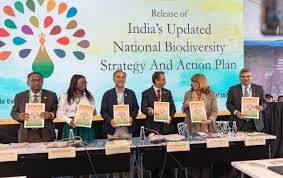
- 03 Nov 2024
In News:
The updated NBSAP was released by India at the 16th Conference of Parties (COP16) to the Convention on Biological Diversity (CBD).
Overview of the NBSAP (2024-30):
- Title:Updated National Biodiversity Strategies and Action Plan: A Roadmap for Conservation of India’s Biodiversity.
- Objective: To provide a comprehensive roadmap for biodiversity conservation, aligning with global frameworks like the Kunming-Montreal Global Biodiversity Framework (KMGBF).
Key Features of the Updated NBSAP:
- Alignment with Global Frameworks:
- The Kunming-Montreal Global Biodiversity Framework (KMGBF) adopted in 2022 aims to halt and reverse biodiversity loss by 2030.
- India’s updated NBSAP aligns with KMGBF’s goals, focusing on biodiversity conservation, sustainable resource use, and ensuring fair benefit-sharing.
- 23 National Biodiversity Targets:
- The targets are focused on three key themes:
- Reducing threats to biodiversity
- Ensuring sustainable use of biodiversity
- Enhancing tools for biodiversity implementation
- The targets are focused on three key themes:
- Key Domains of Focus:
- Area-based conservation: Protecting ecosystems and habitats.
- Ecosystem resilience: Enhancing the ability of ecosystems to withstand environmental stressors.
- Recovery and conservation of threatened species.
- Conservation of agrobiodiversity: Ensuring the sustainability of agricultural biodiversity.
- Sustainable management of biodiversity.
- Enabling tools and solutions: Including financial and technical support for implementation.
- Financial Plan and Expenditure:
- Biodiversity Expenditure Review (BER) estimated an average annual expenditure of Rs 32,20,713 crore (FY 2017-2022) for biodiversity conservation.
- Future funding requirements (FY 2024-2030) estimated at Rs 81,664.88 crore annually at the central government level.
- Biodiversity Finance Plan suggests financing solutions, including public finance, corporate social responsibility (CSR), Ecological Fiscal Transfer (EFT), and Access and Benefit Sharing (ABS) mechanisms.
- Capacity Building:
- The NBSAP stresses the need for capacity building across various levels—national, state, and local.
- Focus on skills acquisition for biodiversity management and enhancing knowledge to implement conservation strategies.
Implementation Framework:
- Multi-Level Governance:
- At the national level, the Ministry of Environment, Forest, and Climate Change (MoEFCC) will oversee implementation with involvement from 22 other ministries.
- State-level: Involves State Biodiversity Boards and Union Territory Biodiversity Councils.
- Local level: Community-driven efforts through Biodiversity Management Committees.
- BIOFIN and Resource Mobilization:
- India is recognized as a leading country in the implementation of the Biodiversity Finance Initiative (BIOFIN).
- Encouragement for private entrepreneurs, businesses, and international donors to invest in biodiversity through innovative financial instruments like:
- Green Bonds
- Green Funds
- Payment for Ecosystem Services (PES)
- Incentives for Financial Solutions:
- India aims to explore funding from corporate social responsibility (CSR), ecological fiscal transfers, and access and benefit sharing mechanisms to meet the financial needs for biodiversity conservation.
Challenges and Strategies:
- Challenges India Faces:
- Habitat fragmentation
- Pollution
- Illegal wildlife trade
- Adverse effects of climate change
- Strategic Responses:
- The updated NBSAP provides strategies to address these challenges, ensuring comprehensive conservation and sustainable use of biodiversity.
First in the World Challenge
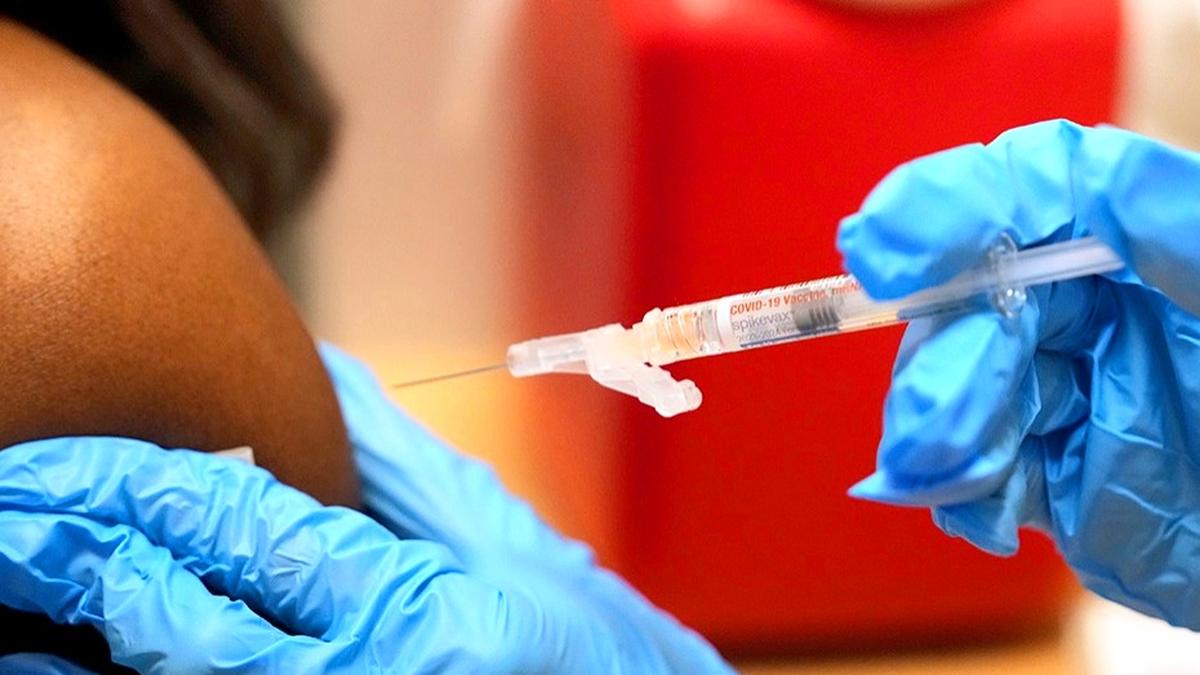
- 03 Nov 2024
In News:
ICMR announces ‘First in the World Challenge’ to encourage scientists to find innovative ideas to tackle health issues.
Key Highlights:
- Objective:
- Encourage bold, out-of-the-box ideas for solving difficult health problems.
- Aim to foster novel and groundbreaking biomedical innovations (vaccines, drugs, diagnostics, interventions, etc.).
- Target projects that are “first of their kind” and have never been tried or tested globally.
- Key Features of the Initiative:
- Focus on Groundbreaking Innovations:
- Emphasis on high-risk, high-reward ideas with potential for significant global health impact.
- Excludes proposals aiming for incremental knowledge or process innovation.
- Scope of Research:
- Breakthroughs in biomedical and health technologies such as:
- Vaccines
- Drugs/Therapeutics
- Diagnostics
- Interventions
- Breakthroughs in biomedical and health technologies such as:
- Focus on Groundbreaking Innovations:
- Funding & Support:
- Provides funding for projects at various stages, from proof-of-concept to prototype development and final product.
- Support for projects that have the potential to lead to “first-of-its-kind” biomedical innovations.
- Application Process:
- Open to individual researchers or teams (from single or multiple institutions).
- Teams must designate a Principal Investigator responsible for the project’s technical, administrative, and financial aspects.
- Selection Criteria:
- A selection committee will be formed with:
- Experts, innovators, policymakers, and distinguished scientists with an outstanding research record.
- Proposals evaluated based on originality, impact potential, and innovation.
- A selection committee will be formed with:
About the Indian Council of Medical Research (ICMR)
- History:Founded in 1911 as the Indian Research Fund Association (IRFA), renamed ICMR in 1949.
- Role & Mandate:
- Ministry of Health and Family Welfare, Government of India.
- Formulates, coordinates, and promotes biomedical research in India.
- Focus on improving public health and addressing national health challenges.
- Vision:“Translating Research into Action for Improving the Health of the Population.”
Wildlife Crime Control Bureau (WCCB)
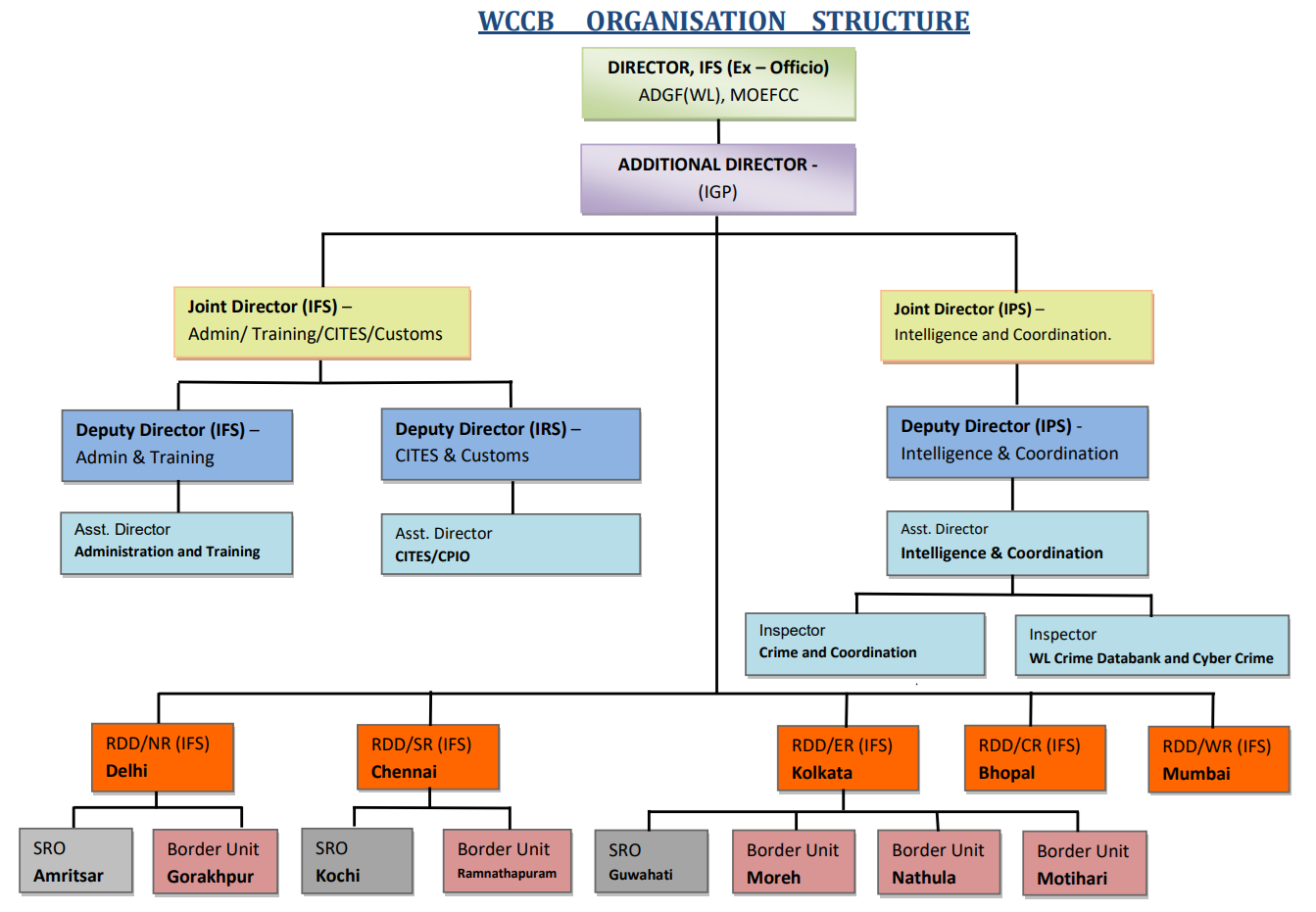
- 03 Nov 2024
In News:
The Wildlife Crime Control Bureau (WCCB) of the Ministry of Environment, Forest and Climate change has constituted a team to enquire into the death of ten elephants in Bandhavgarh Tiger Reserve of Madhya Pradesh. The team is conducting an independent enquiry in the matter.
- Incident Overview:
- Ten elephants found dead in Bandhavgarh Tiger Reserve, Madhya Pradesh, between October 29-31, 2024.
- Preliminary cause of death suspected to be poisoning; final cause pending postmortem and toxicological analysis.
- Government Actions:
- Union Government:
- The Wildlife Crime Control Bureau (WCCB) has set up a team to conduct an independent investigation into the deaths.
- Madhya Pradesh Government:
- Constituted a five-member State-level inquiry committee, headed by the Additional Principal Chief Conservator of Forests (APCCF, Wildlife).
- Committee includes members from civil society, scientists, and veterinarians.
- The State Tiger Strike Force (STSF) is conducting field investigations, combing surrounding areas for further clues.
- Other Involved Authorities:
- The Principal Chief Conservator of Forests (PCCF) and Chief Wildlife Warden of Madhya Pradesh are directly supervising the inquiry in Bandhavgarh.
- Senior officials from the National Tiger Conservation Authority (NTCA) have visited the site for discussions and investigation.
- Union Government:
About Wildlife Crime Control Bureau (WCCB):
- Mandate:
- Combats organized wildlife crime through intelligence gathering and coordination with enforcement agencies.
- Develops wildlife crime data and assists in prosecutions.
- Provides capacity building for wildlife crime enforcement agencies.
- Operations & Initiatives:
- Conducts operations like SAVE KURMA, THUNDERBIRD, WILDNET, and more to counter wildlife crimes.
- Nodal Ministry: Ministry of Environment, Forest and Climate Change.
- Headquarters: New Delhi.
PARAKH RashtriyaSarvekshan 2024
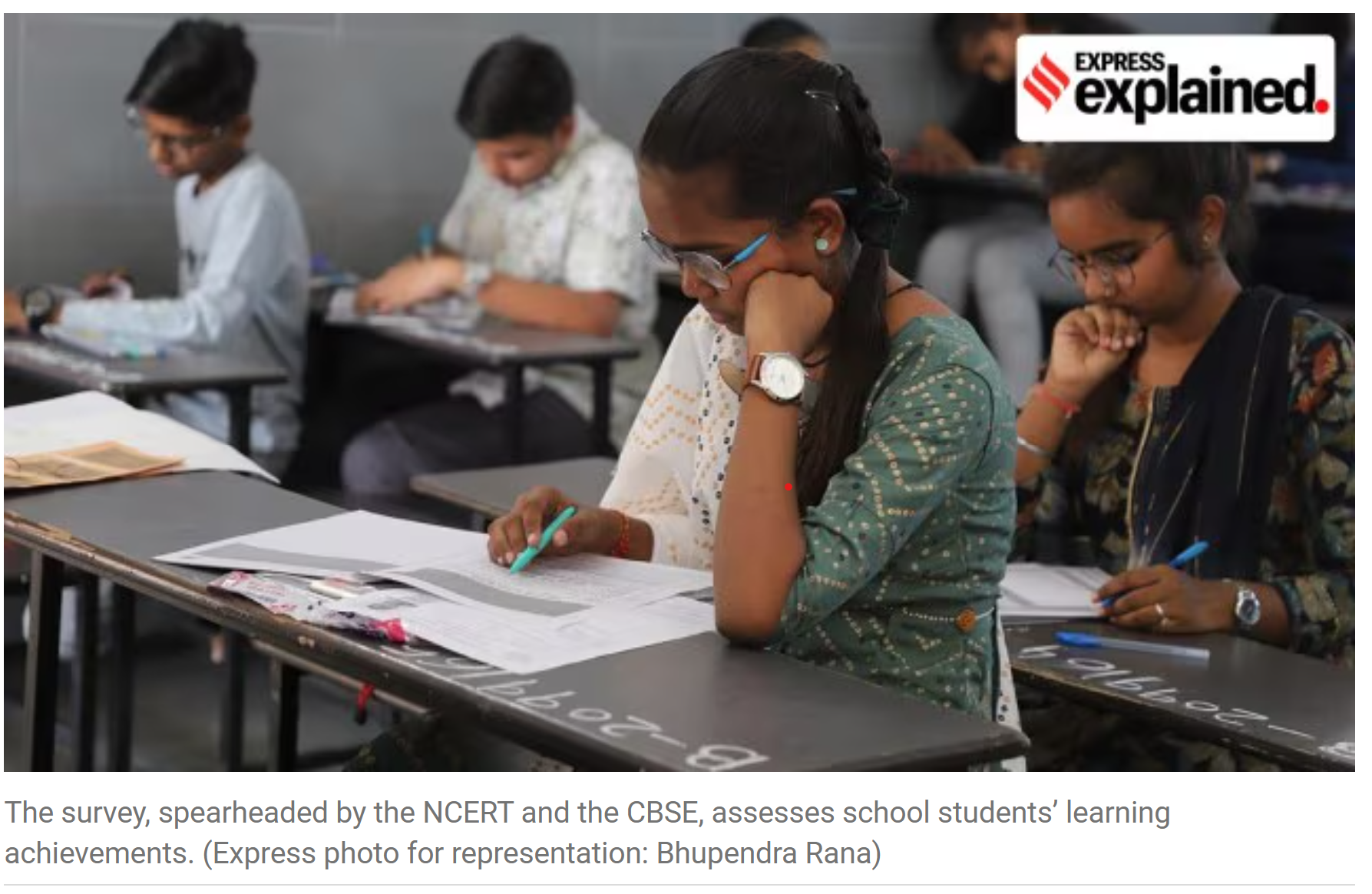
- 02 Nov 2024
In News:
The National Achievement Survey (NAS), a nationwide survey meant to assess students’ learning progress, will be held on December 4 this year under a new name – PARAKH RashtriyaSarvekshan 2024. This year’s assessment involves a few changes from the last round in 2021.
Overview of PARAKH RashtriyaSarvekshan 2024:
- New Name: The National Achievement Survey (NAS) is now rebranded as the PARAKH RashtriyaSarvekshan 2024.
- Date: The survey will be held on December 4, 2024.
- Purpose: To assess students’ learning achievements across India.
- Organizing Bodies: Spearheaded by NCERT and CBSE.
What Does the Survey Assess?
- Assessment Focus: Evaluates students’ learning outcomes in various subjects.
- Survey Methodology: Uses multiple-choice questions to assess a sample of students.
- Target Groups: Students from government, government-aided, and private schools across every district in India.
History of NAS and PARAKH:
- NAS History: Conducted every three years since 2001 to capture learning progress.
- Involvement of Classes:
- 2001-2014: Included Classes 3, 5, and 8.
- 2014-15: Class 10 was introduced.
- 2017 and 2021: Covered Classes 3, 5, 8, and 10.
- Report Cards: Provides national, state, and district-level performance data.
Changes in 2024 Survey (PARAKH RashtriyaSarvekshan):
- Targeted Classes:
- Class 3 (End of foundational stage)
- Class 6 (End of preparatory stage)
- Class 9 (End of middle stage)
- Exclusion of Class 10: Unlike previous years, Class 10 students are not part of this year's assessment.
- Subjects Assessed:
- Class 3 & 6: Language, Mathematics, and The World Around Us (Concepts of Science, Social Science, and Environmental Education).
- Class 9: Language, Mathematics, Science, and Social Science.
Alignment with National Education Policy (NEP) 2020:
- NEP Structure: Aligns with the NEP 2020 framework, categorizing educational stages:
- Class 1-2: Foundational stage
- Class 3-5: Preparatory stage
- Class 6-8: Middle stage
- Class 9-12: Secondary stage
- The shift to Class 6 and 9 for this year’s survey matches the NEP's stage-wise educational framework.
Key Differences in 2024 Assessment:
- Survey Scale: In 2024, 75,565 schools and 22.9 lakh students from 782 districts will participate.
- 2021 Assessment Data:
- The 2021 survey revealed a drop in learning outcomes post-COVID-19.
- Class 3 students showed a performance below the national average in all states.
- Class 5: Only Punjab and Rajasthan had scores above the national average.
PARAKH's Role:
- PARAKH (Performance Assessment, Review, and Analysis of Knowledge for Holistic Development) was established in 2023 as the National Assessment Centre to oversee such achievement surveys.
- Mandate: One of PARAKH’s primary roles is to organize national surveys like the PARAKH RashtriyaSarvekshan.
Significance of the Survey:
- Data Utilization: The survey helps in shaping educational policies based on real-time data on student learning levels.
- Competency-Based Assessment: This year’s survey is focused on competency-based assessments, aligning with the goals of NEP 2020.
- Policy and Planning: The data helps in designing interventions to address regional or subject-wise disparities in education quality.
Hwasong-19
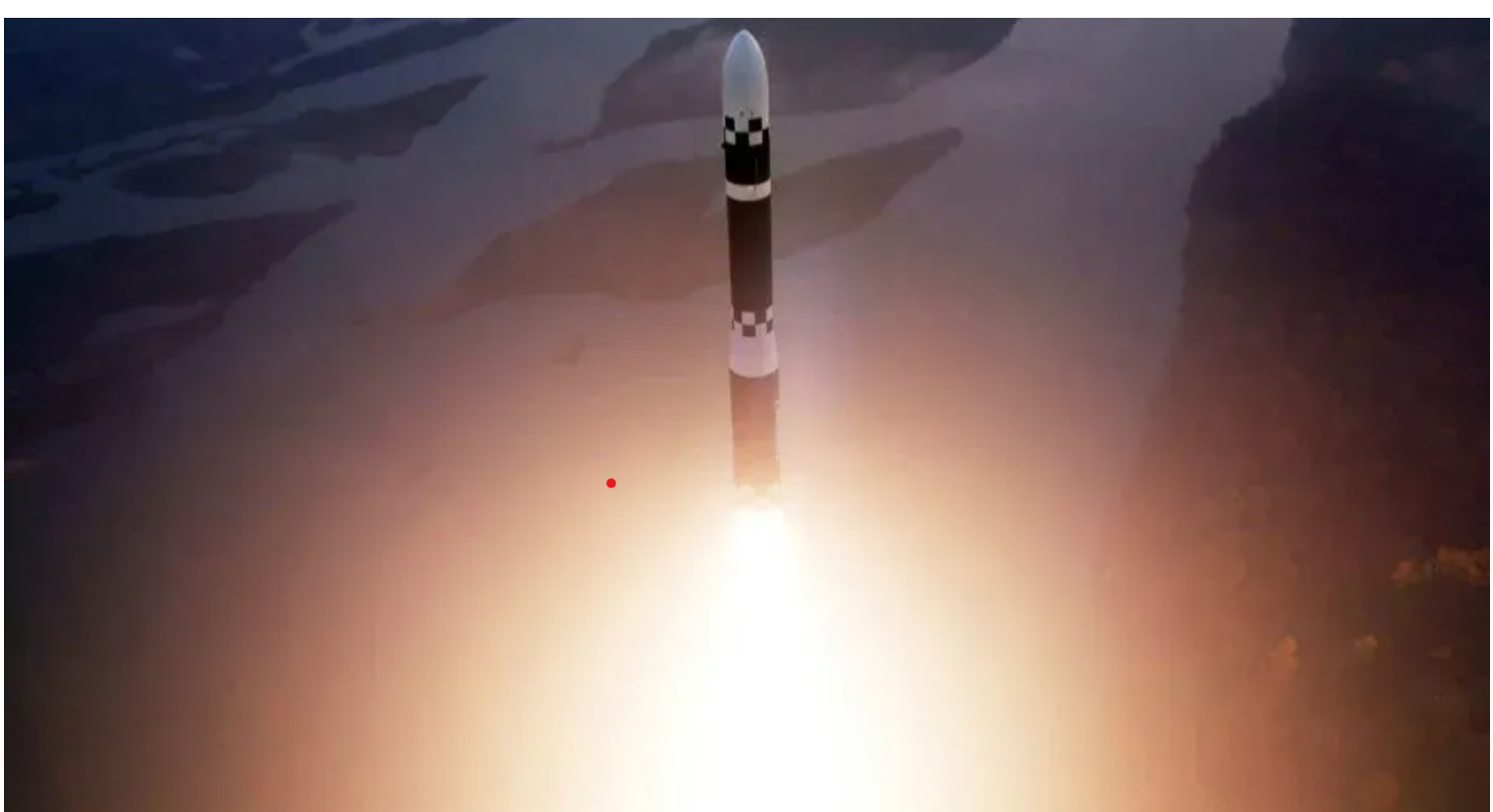
- 02 Nov 2024
In News:
- North Korea recently announced the successful test-firing of its latest intercontinental ballistic missile (ICBM), the ‘Hwasong-19’.
- Claims by North Korea: The missile was described as ‘the world’s strongest strategic missile’ and a ‘perfected weapon system’ by North Korean state media.
Key Features of the Hwasong-19:
- Solid-Fuel Propulsion: The Hwasong-19 reportedly uses solid-fuel propulsion, which enables quicker launches and greater secrecy. This contrasts with liquid-fuel missiles, which take longer to prepare and are more visible.
- Enhanced Performance: The missile is said to have improved altitude and flight duration compared to previous North Korean ICBMs, marking significant progress in missile technology.
- Size: The Hwasong-19 is estimated to be 28 meters long (92 feet), which is notably larger than many other ICBMs, including those from the U.S. and Russia, which are typically under 20 meters (66 feet).
Strategic Implications:
- Reach and Targeting: The Hwasong-19 is believed to have a range of over 13,000 kilometers, which is sufficient to target the U.S. mainland, signaling a significant advancement in North Korea’s missile capabilities.
- Nuclear Capability: While specific details on the missile’s payload remain undisclosed, the Hwasong-19 could potentially be equipped with a nuclear warhead, enhancing North Korea's strategic deterrence.
Impact on Regional and Global Security:
- US-North Korea Tensions: The launch occurred against the backdrop of ongoing U.S.-North Korea tensions, particularly over North Korea’s nuclear and missile programs. The missile could potentially alter the regional security dynamics, especially in East Asia.
What is an ICBM?
- ICBM Definition: An intercontinental ballistic missile (ICBM) is a long-range missile capable of carrying nuclear warheads (or other payloads) across continents.
- Range and Speed: ICBMs typically have a minimum range of 5,500 km (3,400 miles), with some capable of reaching up to 16,000 km or more, making them far faster and more capable than other ballistic missiles.
- Launch Mechanism: ICBMs are launched from land or submarine platforms, traveling through space before re-entering the Earth’s atmosphere and targeting distant objectives.
- Comparison with India's Agni-V: India’s Agni-V ICBM, which has a range of over 5,000 km, is often compared to North Korea’s missile systems.
Asset Recovery Interagency Network–Asia Pacific (ARIN-AP)

- 02 Nov 2024
In News:
- India, represented by the Directorate of Enforcement (ED), has joined the Steering Committee of the Asset Recovery Interagency Network-Asia Pacific (ARIN-AP).
- Leadership Role: India will assume the presidency of ARIN-AP and host the Annual General Meeting (AGM) in 2026, providing a platform for global cooperation in asset recovery and tackling economic crimes.
ARIN-AP Overview:
- Establishment: ARIN-AP is a multi-agency network formed to address the proceeds of crime across the Asia-Pacific region.
- Network Goals: Its mission is to facilitate cross-border collaboration in the areas of asset tracing, freezing, and confiscation.
- Membership: ARIN-AP includes 28 member jurisdictions and 9 observers, and operates as a key component of the Global CARIN Network (Camden Asset Recovery Inter-Agency Network).
- Functioning: ARIN-AP operates through a network of contact points that enable intelligence exchange among member agencies, promoting effective communication and coordination for asset recovery.
Significance of ARIN-AP's Work:
- Combating Economic Crimes: ARIN-AP enhances the efforts of law enforcement agencies in tracing and recovering assets linked to criminal activities, including both movable and immovable assets.
- Informal Exchange of Intelligence: The network allows for the informal exchange of intelligence between agencies, which often accelerates the identification and recovery of proceeds of crime. This can later lead to formal actions through bilateral or multilateral agreements.
- Global Impact: With over 100 jurisdictions in the broader CARIN Network, ARIN-AP plays a key role in global efforts to combat fugitive economic offenders and illicit financial flows.
India’s Contribution and Alignment with G-20 Priorities:
- India’s Leadership: India’s presidency in ARIN-AP will enhance its leadership in asset recovery, facilitating closer cooperation with regional and international law enforcement agencies.
- G-20 Alignment: This role aligns with India’s priorities under the G-20 framework, particularly focusing on the Nine-Point Agenda aimed at tackling fugitive economic offenders and improving asset recovery mechanisms.
Discovery of the First "Black Hole Triple" System
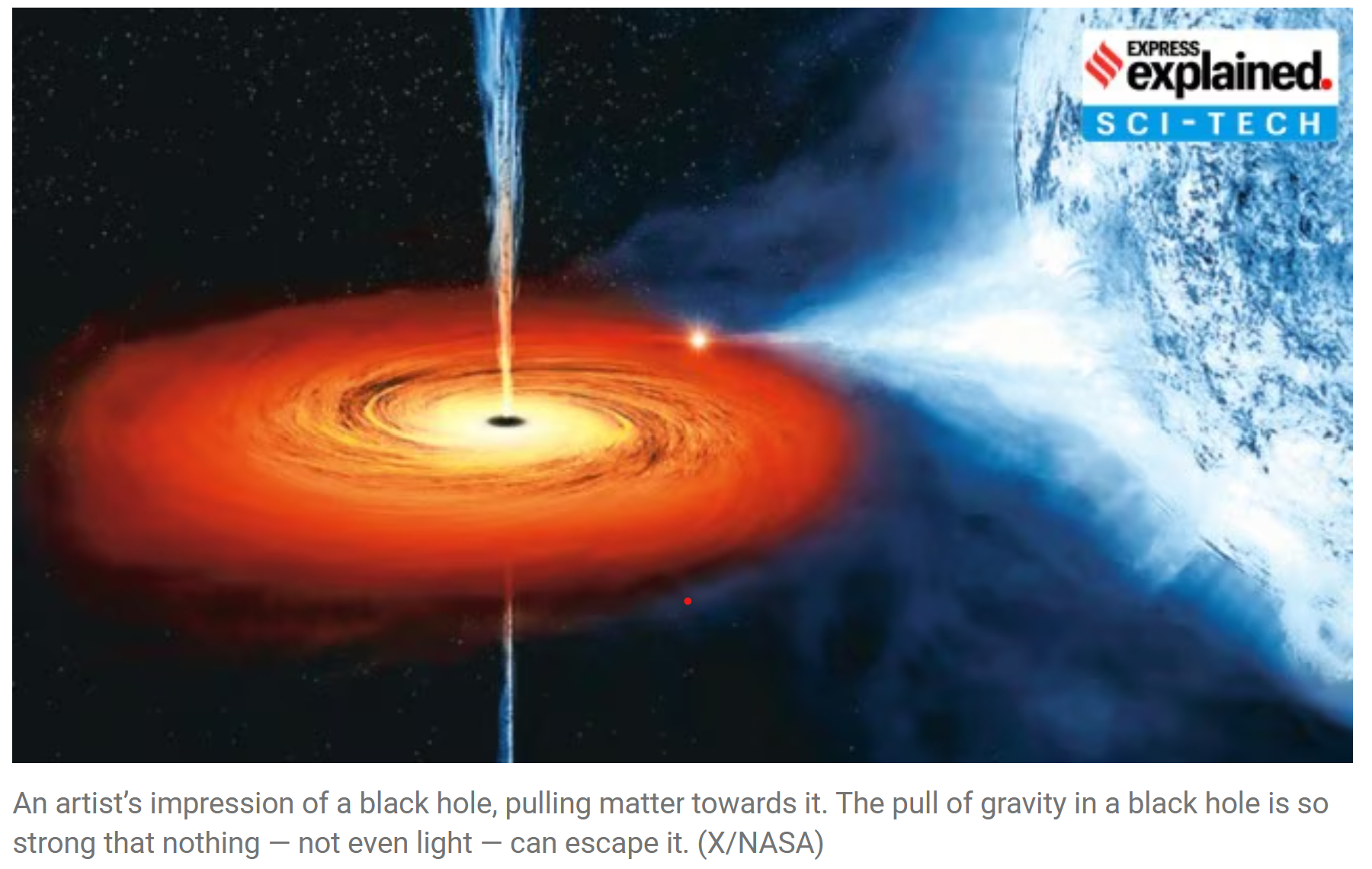
- 02 Nov 2024
In News:
Scientists have discovered a "black hole triple" system, which is a rare configuration in space involving one black hole and two stars.
Overview of the Discovery:
- Location: The system is located 8,000 light years away from Earth, in the constellation Cygnus.
- Key Features:
- A black hole at the center, currently consuming a star that is spiraling very close to it.
- A second, more distant star that orbits the black hole every 70,000 years, and another star that orbits it every 6.5 days.
What is a Black Hole Triple System?
- Black Hole and Two Stars: Unlike typical binary systems (comprising a black hole and one other object), this system contains a black hole surrounded by two stars, one nearby and one far away.
- V404 Cygni: The central black hole in the system is the V404 Cygni, one of the oldest known black holes, roughly 9 times the mass of the Sun.
Significance of the Discovery:
- Questions on Black Hole Formation: The discovery raises new questions about how black holes are formed. Traditionally, black holes are thought to form after the explosion of a massive star (supernova), but this system does not follow that model.
- New Formation Theory: Researchers suggest the black hole may have formed via a "direct collapse" process, where a star collapses into a black hole without undergoing a supernova explosion. This is referred to as a "failed supernova".
- In a failed supernova, the star's collapse happens too quickly for the explosive outer layers to be ejected, leading to the formation of a black hole without the typical violent explosion.
Implications for Other Binary Systems:
- The black hole’s gradual consumption of one of its stars may imply that some binary black hole systems could have originally been triple systems, with one star eventually being consumed by the black hole.
Research and Collaboration:
- Study: The discovery was made by researchers at California Institute of Technology (Caltech) and Massachusetts Institute of Technology (MIT).
- Published in: The findings were published in Nature in October 2024.
Additional Context:
- Distance: The system is about 8,000 light years away, which is vast but still observable with advanced telescopes.
- Mystery of the "Failed Supernova": The concept of a failed supernova offers new insights into the life cycle of massive stars and their transformation into black holes.
ISRO's Analogue Space Mission in Ladakh
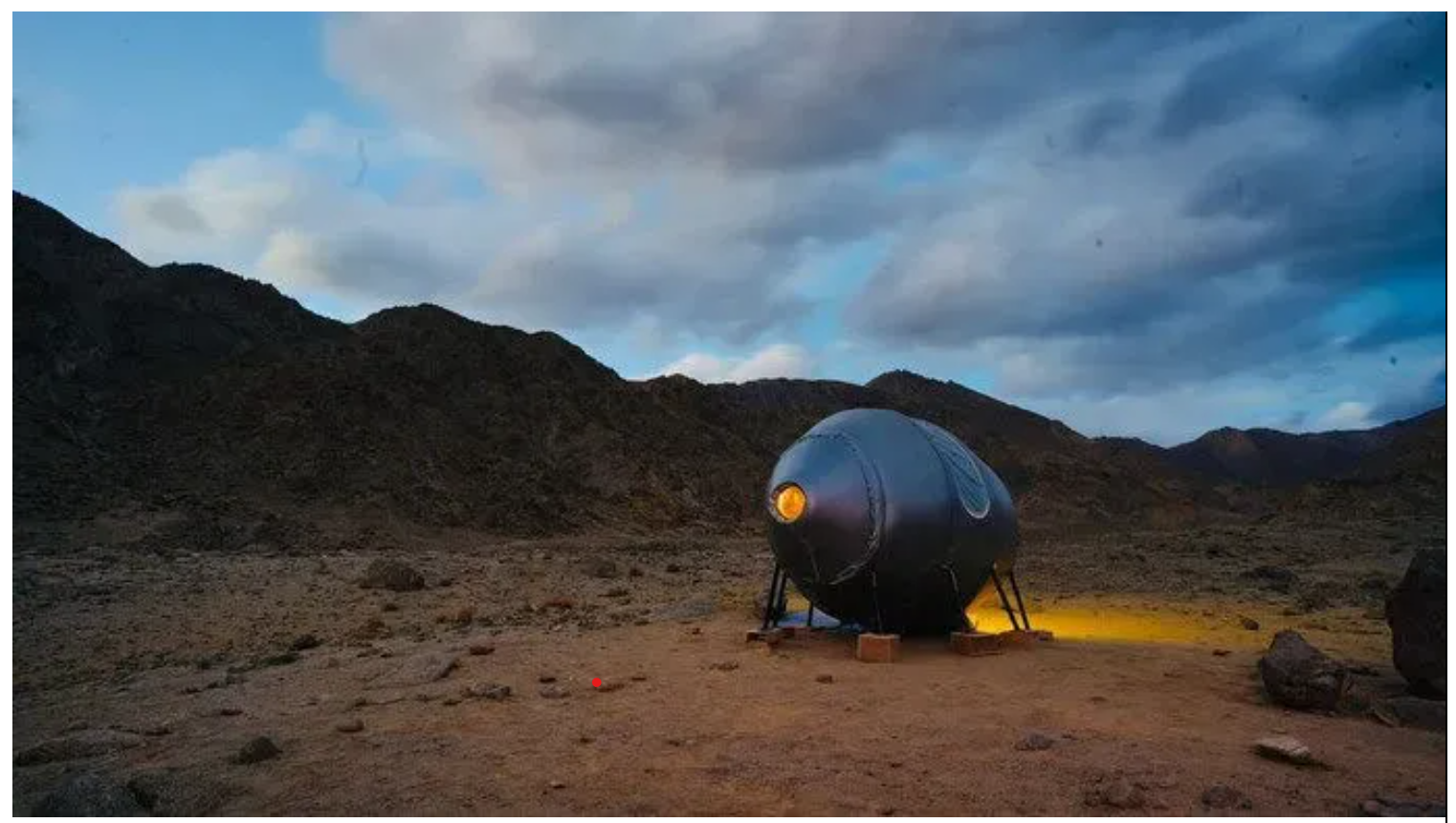
- 02 Nov 2024
In News:
In a significant leap for the country’s space exploration aspirations, India has embarked on its first analogue space mission in Leh, a landmark step that will attempt to simulate life in an interplanetary habitat to tackle the challenges of a base station beyond Earth.
Mission Overview:
- Objective: To simulate living conditions in an interplanetary habitat, addressing challenges astronauts may face during deep-space missions (e.g., Moon, Mars).
- Goal: Study long-term isolation, habitat design, resource management, and psychological effects on astronauts.
- Partners: ISRO’s Human Spaceflight Centre, AAKA Space Studio, University of Ladakh, IIT Bombay, Ladakh Autonomous Hill Development Council.
Rationale for Ladakh:
- Geological Similarities: Ladakh’s terrain mirrors Martian and lunar surfaces, making it ideal for testing space technologies.
- Climate: Cold, dry, high-altitude conditions simulate the extreme environments of space.
- Focus Areas: Testing habitat construction, microbial studies, and survival strategies for long-duration space travel.
What are Analogue Space Missions?
- Definition: Simulated space missions on Earth designed to replicate the conditions of space exploration.
- Purpose:
- Test technologies (e.g., life support, habitat design, in-situ resource utilization).
- Study human behavior, psychological impacts of isolation, and operational readiness for extended space travel.
- Relevance: Crucial for preparing astronauts for missions to the Moon, Mars, or asteroids.
Significance of Analogue Missions:
- Technological Testing: Analogue missions help in evaluating systems for habitat design, life support, and health monitoring.
- Human Factors: They provide insights into crew health, teamwork under pressure, and performance during isolation.
- Psychological Studies: Address the impact of confinement, isolation, and communication delays on astronauts.
- Training: Participants (analogue astronauts) are trained for real-world space missions by conducting scientific experiments and managing emergencies.
Global Examples of Analogue Missions:
- NASA’s NEEMO: An underwater mission simulating microgravity conditions to train astronauts for space tasks.
- SIRIUS Program (UAE): Focuses on the psychological impacts of long-duration space isolation, featuring international collaborations.
- Arctic Mars Analogue Svalbard Expedition (AMASE): Uses the extreme Arctic environment of Svalbard to test Mars exploration technologies and procedures.
Relation to India’s Space Aspirations:
- Gaganyaan Mission: ISRO’s human spaceflight mission aiming to send Indian astronauts into space.
- Interplanetary Exploration: The analogue mission supports India’s broader goal of advancing human space exploration and technology development for Mars and beyond.
Melanistic Tigers
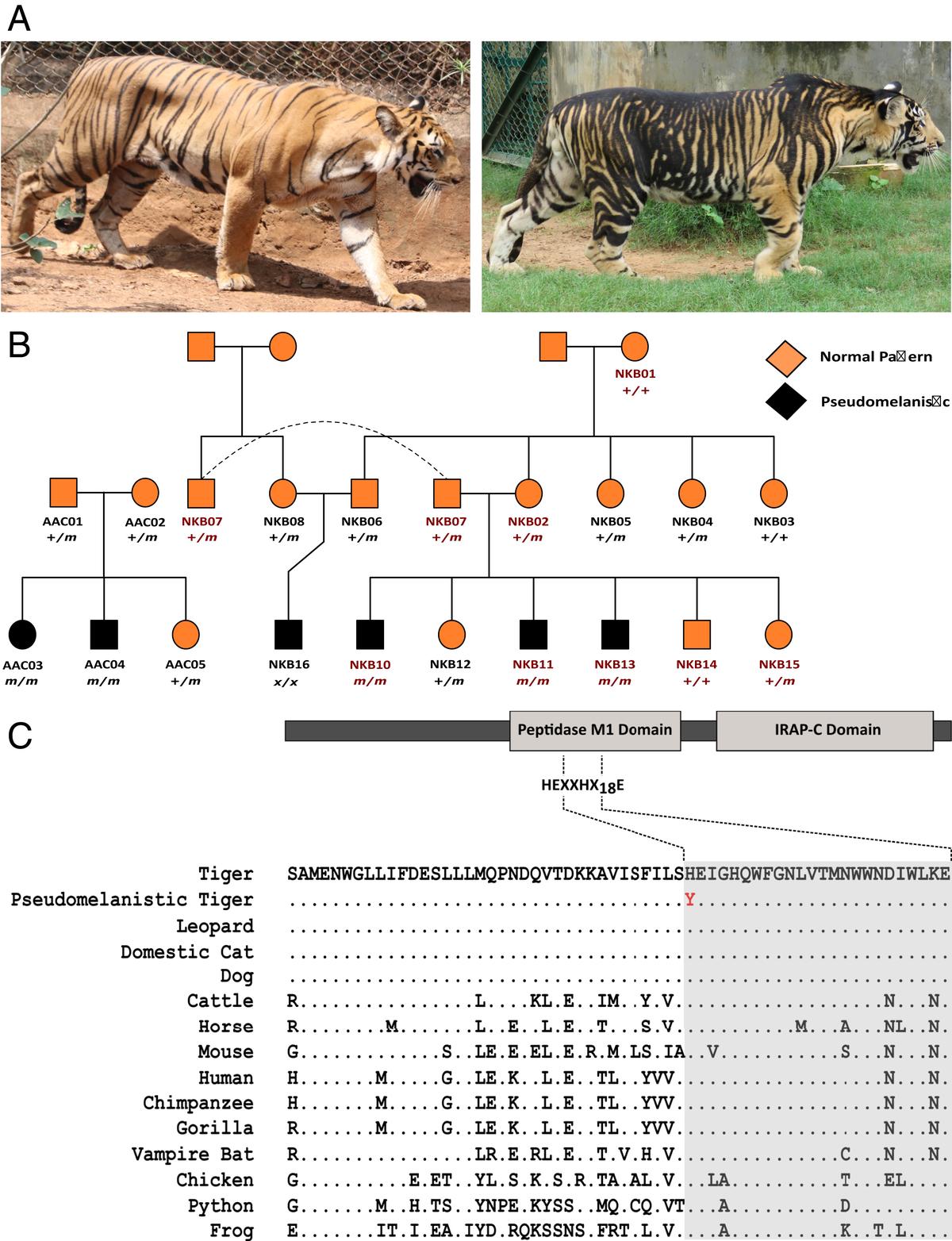
- 01 Nov 2024
In News:
- Odisha government relocated a tigress from Maharashtra’s Tadoba-Andhari Tiger Reserve to Similipal Tiger Reserve, Odisha, to address inbreeding issues among the tiger population.
- The tigress is part of a genetic diversification plan to remedy the increasing number of pseudo-melanistic tigers in the region.
Pseudo-melanistic Tigers:
- Pseudo-melanistic tigers, often referred to as "black tigers," exhibit a darker coat with broader, more prominent stripes.
- The mutation leads to the appearance of a mostly black fur, with occasional white-orange stripes.
Genetic Basis:
- This coloration is due to a mutation in the Taqpep gene, which causes the widening and darkening of stripes on the tiger's coat.
- The mutation is linked to genetic drift and inbreeding within the isolated Similipal population.
Historical Context:
- These tigers were once considered mythical until the 1700s, with sightings only being documented in the 1990s and 2017-18.
- The first confirmed genetic evidence of the black tiger appeared when a cub was born in captivity at Oklahoma City Zoo in the 1970s.
Distribution and Prevalence:
- Pseudo-melanistic tigers are predominantly found in Similipal Tiger Reserve, with 27 out of 30 tigers in Odisha exhibiting the trait.
- Other instances of such tigers exist in captivity, such as in Nandankanan Zoological Park (Bhubaneswar) and Arignar Anna Zoological Park (Chennai), both tracing ancestry to Similipal.
Genetic Studies:
- A 2021 study by the National Centre for Biological Sciences (NCBS) linked the Taqpep gene mutation to the unique appearance of these tigers.
- The mutation causes a missense change in the gene, replacing Cytosine with Thymine (C1360T), altering the tiger’s coat pattern.
High Frequency of Mutation in Similipal:
- Genetic analyses indicate a high frequency of the Taqpep gene mutation in Similipal tigers, with a 60% chance that a tiger born there will carry the mutated gene.
- Inbreeding and genetic isolation have contributed to this phenomenon, as Similipal’s tiger population is geographically cut off from other populations.
PM rolls out Ayushman Bharat for Citizens aged 70 and above
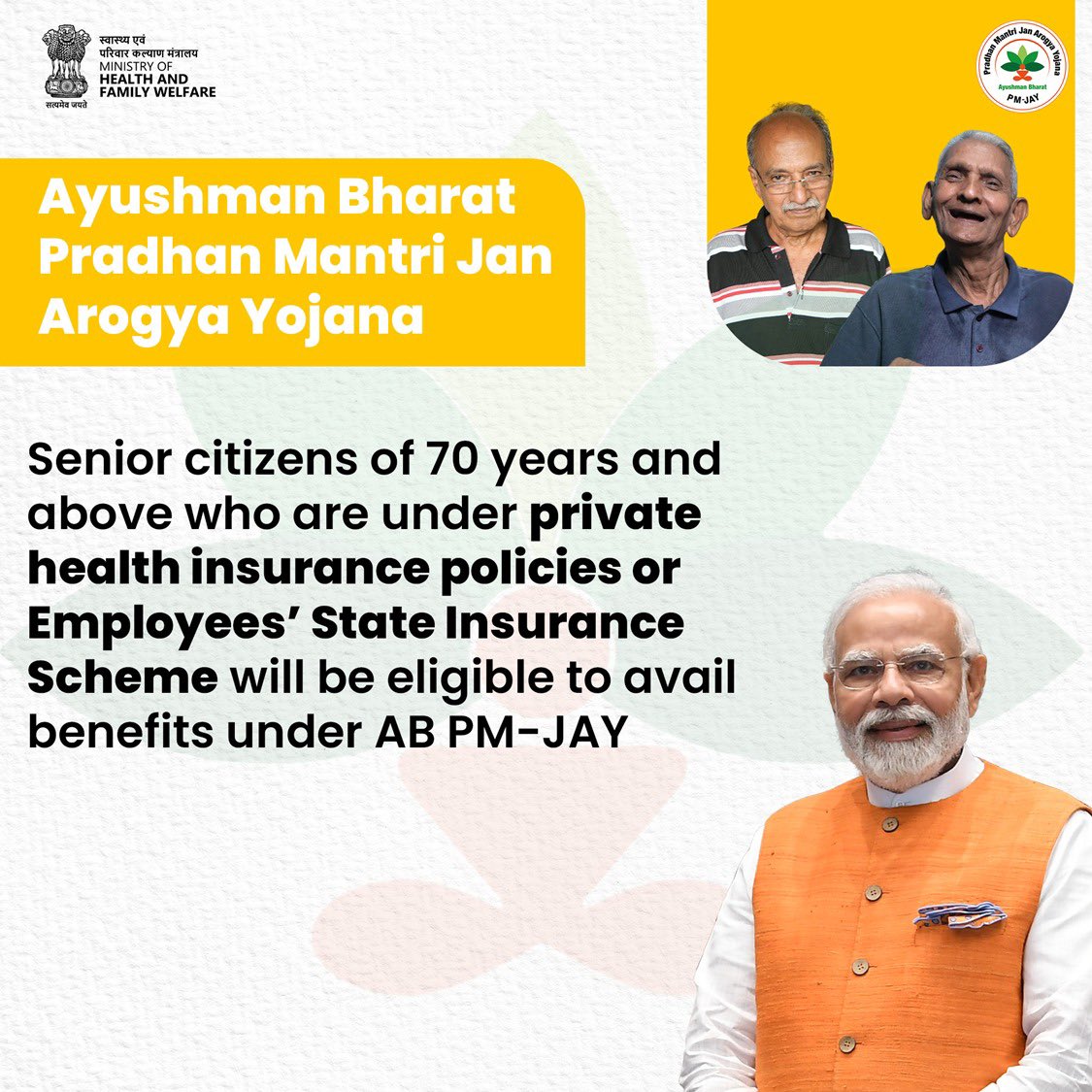
- 01 Nov 2024
In News:
Prime Minister Narendra Modi has expanded the Ayushman Bharat Pradhan Mantri Jan Arogya Yojana (PM-JAY) to provide health coverage to citizens aged 70 years and above, regardless of their income or economic status. This move is aimed at addressing the healthcare challenges faced by India's elderly population, which has been growing rapidly.
Key Highlights of the Ayushman Bharat Expansion:
- Health Coverage for Elderly:
- Ayushman Vaya Vandana Card: This new health card offers Rs 5 lakh annually for individuals aged 70 and above. The coverage is shared within the family, so if there are multiple elderly beneficiaries in one household, the total cover will be split.
- Scope: This initiative is designed to provide a safety net for elderly people, many of whom had previously been unable to access treatment due to high costs.
- Significance of the Scheme:
- India’s elderly population is rapidly growing, with the number of people over 60 expected to reach 319 million by 2050, up from 103 million in 2011.
- The expansion of PM-JAY to include those aged 70+ is a critical step in making universal health coverage more inclusive as India’s population ages.
- Eligibility and Registration:
- Individuals aged 70 years and above must register on the PM-JAY portal or through the Ayushman app. Those who already have an Ayushman Bharat card must complete an eKYC process to receive the new card and coverage.
- Exclusions: The scheme is not available in Delhi and West Bengal, as these states have not adopted the Ayushman Bharat scheme.
- Financial Details:
- The initial outlay for this expansion will be Rs 3,437 crore, covering the remainder of the current financial year and the next year.
- Cover for Overlapping Health Schemes: Elderly individuals who are already covered under other government schemes (e.g., CGHS, Ex-Servicemen Contributory Health Scheme) will have the option to either continue with their current coverage or choose Ayushman Bharat. Those with ESIC or private insurance can access both Ayushman Bharat and their existing cover.
- Coverage Scope:
- The expansion is expected to benefit approximately 6 crore individuals across 4.5 crore families.
- Existing Coverage: Around 1.78 crore elderly people are already covered under the scheme. Additional coverage will be provided to those not currently included in the scheme.
- Interoperability with Other Schemes:
- Those under the Central Government Health Scheme (CGHS), Ex-Servicemen Contributory Health Scheme (ECHS), or other similar schemes will need to choose between their current insurance and the Ayushman Bharat scheme.
- However, individuals enrolled in Employees' State Insurance Corporation (ESIC) can have both their existing cover and the Ayushman Bharat coverage.
- Rollout and Reach:
- The scheme will be implemented across 33 states and Union Territories, except Delhi, Odisha, and West Bengal.
- Over 29,600 hospitals, including more than 12,600 private facilities, are empanelled to provide treatment under PM-JAY.
Other Key Announcements:
- U-WIN Portal: A pan-India digital platform for routine vaccinations, aimed at enhancing the efficiency of vaccination programs.
- Critical Care Facilities: The Prime Minister also launched critical care infrastructure, including new facilities in AIIMS Bhubaneswar, Kalyani, and super-specialty units in Himachal Pradesh and Madhya Pradesh.
LiDAR (Light Detection and Ranging)

- 01 Nov 2024
In News:
LiDAR (Light Detection and Ranging) is a cutting-edge remote sensing technology that uses laser pulses to measure distances and create detailed 3D maps of Earth's surface. This technology has recently played a crucial role in discovering a lost Mayan city hidden under the dense Mexican jungle.
What is LiDAR?
- Definition: LiDAR is a remote sensing technology that uses pulsed laser light to measure distances and generate precise 3D models of Earth’s surface.
- Components: The system includes a laser, a scanner, and a GPS receiver. It is usually mounted on an aircraft to map large areas of terrain.
- Data Accuracy: LiDAR can create high-resolution 3D models with vertical accuracy up to 10 cm, making it highly precise for mapping ground elevation.
How LiDAR Works
- Laser Emission: LiDAR sends out rapid laser pulses toward the ground.
- Reflection: These pulses hit the Earth’s surface, reflecting off features like vegetation, buildings, and terrain.
- Measurement: The time it takes for the laser light to travel to the ground and back is measured, allowing the system to calculate the distance between the sensor and the surface.
- Point Cloud Data: The reflected light data is collected as a "point cloud", representing all the surfaces it hits, including trees, buildings, and other features.
- Refinement: This point cloud can be processed into a Digital Elevation Model (DEM), stripping away vegetation and structures to reveal the “bare earth,” which highlights features like roads, buildings, and hidden settlements.
Why LiDAR is Useful for Archaeologists
- Large-Scale Surveying: Traditional archaeological methods often involve labor-intensive fieldwork, such as walking over every square meter and manually cutting through thick vegetation. LiDAR, however, allows researchers to quickly survey vast areas of land, even through dense jungle, from the comfort of a lab.
- Visibility Under Vegetation: LiDAR’s ability to penetrate dense foliage and reveal features beneath the surface is a game changer. Even thick tree canopies that obscure the ground are no match for the laser pulses, which can pass through gaps to illuminate hidden structures.
The Discovery of the Lost Mayan City
- The City of Valeriana: Using publicly available LiDAR data from a forest monitoring project in 2013, archaeologist Luke Auld-Thomas discovered a lost Mayan city in Mexico’s Campeche region. The city, named Valeriana, had been hidden for centuries by the thick jungle.
- City Features: The city has all the hallmarks of a Classic Maya political capital, including:
- Multiple enclosed plazas
- Broad causeways
- Temple pyramids
- A ball court
- A reservoir formed by damming a seasonal watercourse
- Historical Significance: Valeriana is believed to date back before 150 CE and may have been a key political and cultural center in the Maya civilization.
Applications of LiDAR Beyond Archaeology
- Geography and Mapping: LiDAR is widely used to generate precise, three-dimensional data about the Earth’s surface, helping geographers and planners.
- Environmental Monitoring: It is also used in forest monitoring, flood risk assessment, and environmental conservation.
- Urban Planning and Engineering: Engineers use LiDAR for creating highly accurate topographical maps and planning infrastructure projects.
Anti-Counterfeiting Ink developed using Luminescent Nanomaterials

- 01 Nov 2024
In News:
- A novel anti-counterfeiting ink has been developed using luminescent nanomaterials, which significantly enhances security in currency, certificates, medicines, and branded goods.
- The ink utilizes the luminescent properties of rare earth ions and bismuth, enabling excitation-dependent luminescence under different light sources, providing a robust solution to combat counterfeiting.
Key Features:
- Multi-Wavelength Luminescence:
- The ink exhibits distinct colors when exposed to various wavelengths of light:
- Vibrant blue under 365 nm UV light
- Pink under 395 nm UV light
- Orange-red under 980 nm near-infrared (NIR) light
- These varying color emissions make it difficult for counterfeiters to replicate, as traditional covert tags are visible only under UV light and can be easily duplicated.
- The ink exhibits distinct colors when exposed to various wavelengths of light:
- Enhanced Durability:
- The ink remains effective under a wide range of conditions, including varying light, temperature, and humidity, ensuring long-term usability without degradation.
- Simple Application Method:
- The luminescent nanomaterials are synthesized through a co-precipitation method at 120°C.
- The resulting nanomaterials are then mixed into commercially available PVC ink using sonication, allowing for easy dispersion of nanoparticles.
- The ink is applied using screen printing to create patterns and texts that exhibit distinct color changes under different lighting conditions.
- Security Features:
- The ink combines rare earth ions with bismuth emissions, boosting its encryption and decryption capabilities. This creates a high level of security for applications on high-value items.
Applications:
- Currency and Certificates: Enhances the authenticity of financial instruments and official documents.
- Branded Goods: Protects products from counterfeiting and fraud.
- Medicines: Helps verify the authenticity of pharmaceutical products, preventing the distribution of fake medicines.
Benefits:
- Verification: Both consumers and manufacturers can easily verify the authenticity of products, providing an accessible solution to counterfeiting.
- Practical Solution: The ink offers a practical, reliable, and non-invasive method for detecting counterfeit products, addressing a global challenge in various industries.
MhadeiWildlife Sanctuary
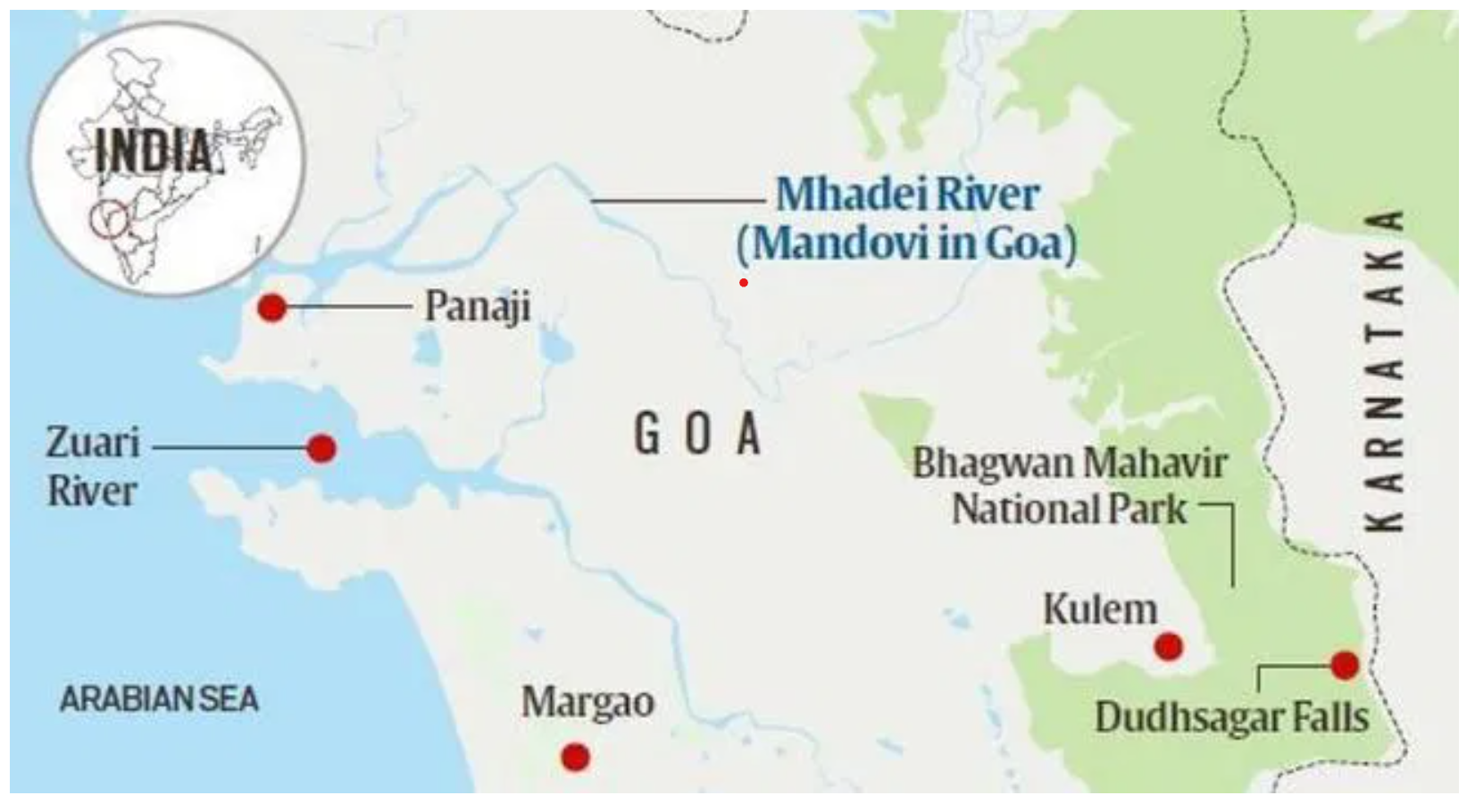
- 01 Nov 2024
In News:
An adult tigress and three cubs have been spotted in the Mhadei wildlife sanctuary in Goa marking the first time evidence of the species has been recorded in the forests bordering the states of Maharashtra and Karnataka since 2020.
Key Highlights:
Location and Geography:
- It is located near Chorla Ghat, between North Goa and Belgavi, and borders Maharashtra and Karnataka.
- The sanctuary is traversed by the Mhadei River, which meets the sea at Panaji, Goa.
Ecological Significance:
- It is part of the Western Ghats, a UNESCO World Heritage site, and shares this ecosystem with Mollem National Park and other protected areas in Goa.
- The sanctuary is integral to wildlife corridors connecting the Sahyadri Tiger Reserve (Maharashtra) and Kali Tiger Reserve (Karnataka), critical for tiger conservation.
Flora and Fauna:
- It is home to diverse wildlife, including the critically endangered Long-billed vultures that nest at Vazra Falls.
- The region supports a variety of flora and fauna due to its biodiversity-rich Western Ghats ecosystem.
Conservation Status and Recommendations:
- Goa is the only state in India to have its entire portion of the Western Ghats under state protection, with Mhadei WLS being a key area.
- The National Tiger Conservation Authority (NTCA) has recommended that Mhadei WLS be designated as a tiger reserve to enhance protection efforts.
- The sanctuary is a potential candidate for inclusion under Project Tiger.
- In 2020, a Royal Bengal tigress and her cubs were tragically poisoned due to human-animal conflict.
Mahadayi Water Dispute:
- The Mahadayi (Madei, Mandovi) River is a source of dispute between Karnataka and Goa regarding water sharing.
- Karnataka seeks to divert water from the river to the Malaprabha River basin for drinking water supply in several districts, through the Kalasa-Banduri Nala project.
- The matter is currently being heard in the Supreme Court.
Report of The Lancet Countdown on Health and Climate Change, 2024
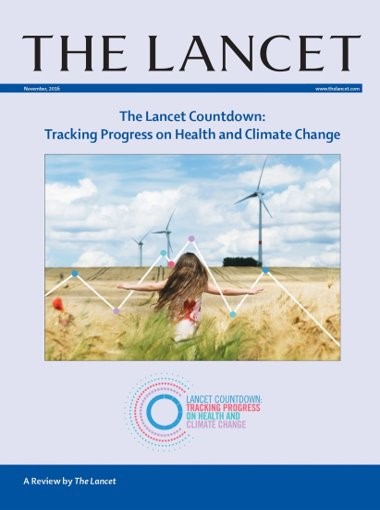
- 30 Oct 2024
In News:
The 2024 edition of The Lancet Countdown on Health and Climate Change presents critical insights into the intersection of health and climate change.
Key Findings from the 2024 Report
- Air Pollution and Mortality in India:
- In 2021, air pollution was responsible for 1.6 million deaths in India.
- Fossil fuels (coal and liquid gas) were identified as major contributors, accounting for 38% of these deaths.
- India was ranked as the second-highest emitter of PM2.5 globally in 2022, contributing 15.8% of consumption-based and 16.9% of production-based PM2.5 emissions.
- Impact of Heat Stress:
- In 2023, India experienced 2400 hours (or 100 days) of moderate to high heat stress, particularly during light outdoor activities like walking.
- Heatwaves have become more frequent, with adults over 65 years experiencing 8.4 heatwave days per year, a 58% increase from 1990-1999.
- This increased heat exposure has led to a loss of 181 billion labor hours globally, translating into an economic loss of approximately $141 billion.
- Global and National Trends in Air Pollution:
- PM2.5 is particularly hazardous because it is fine enough to enter the lungs and bloodstream, leading to severe health risks like respiratory and cardiovascular diseases.
- Nitrogen Dioxide (NO?), Sulphur Dioxide (SO?), Carbon Monoxide (CO), and Ozone (O?) were identified as other pollutants contributing to poor air quality in India.
- Health Impact of Extreme Weather:
- The 2023 heatwave was one of the hottest years on record, exacerbating health risks worldwide, especially for the elderly.
- Droughts and heatwaves also contributed to a rise in food insecurity, affecting millions globally.
- Disease Transmission and Climate Change:
- Dengue transmission potential rose by 85% from 1951-1960 to 2014-2023.
- Coastal areas suitable for the spread of Vibrio pathogens, which cause cholera, expanded by 23%, affecting over 210 million people.
- Health Effects of Fossil Fuel Pollution:
- Continued reliance on fossil fuels worsens air quality, leading to health problems such as respiratory diseases, cardiovascular issues, and adverse pregnancy outcomes.
Government Efforts to Tackle Air Pollution in India
- National Clean Air Programme (NCAP):
- NCAP is a national strategy to reduce air pollution across India, with specific action plans for 131 non-attainment cities. The initiative is supported through various central government schemes such as:
- Swachh Bharat Mission (Urban)
- Atal Mission for Rejuvenation and Urban Transformation (AMRUT)
- Smart City Mission
- Faster Adoption and Manufacturing of Hybrid and Electric Vehicles (FAME-II)
- NCAP is a national strategy to reduce air pollution across India, with specific action plans for 131 non-attainment cities. The initiative is supported through various central government schemes such as:
- Bharat Stage VI (BS-VI) Emission Norms:
- BS-VI standards aim to significantly reduce vehicular pollution, lowering permissible limits for NOx and particulate matter (PM) emissions from vehicles.
- System of Air Quality and Weather Forecasting and Research (SAFAR):
- SAFAR measures air quality and provides forecasts for metropolitan cities based on real-time data, helping authorities take preventive actions.
- Promotion of Renewable Energy:
- India achieved a record 11% of electricity from renewable energy in 2022. However, 71% of India’s electricity still comes from coal, underscoring the need for a faster transition to cleaner energy sources.
CRS Mobile App
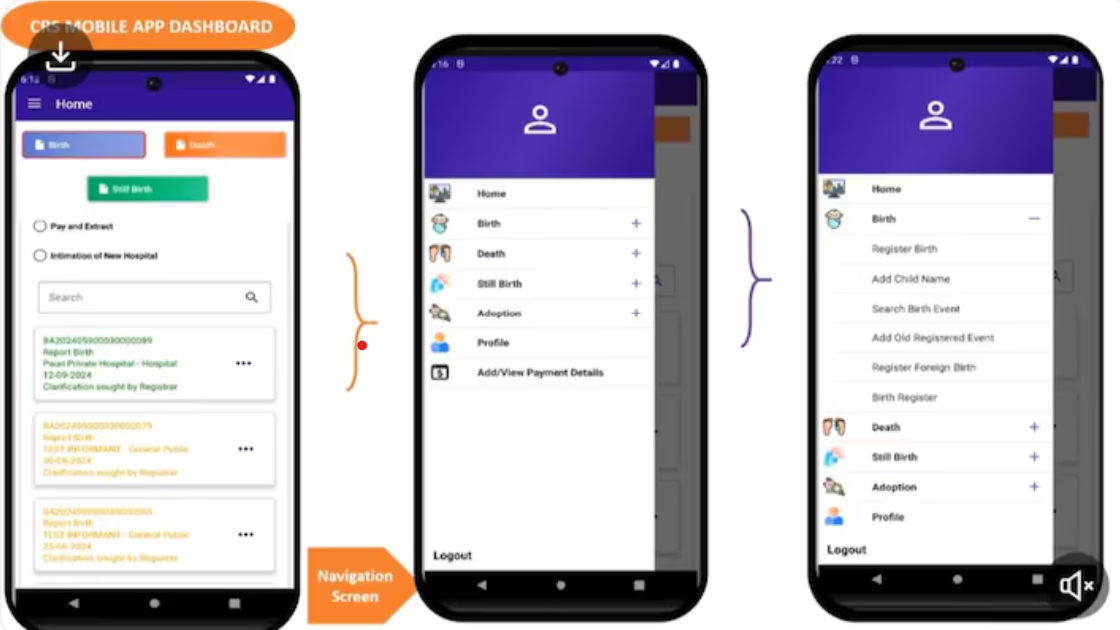
- 30 Oct 2024
In News:
- Recently, the Union Home Minister Amit Shah launched the Civil Registration System (CRS) mobile app.
- The app aims to integrate technology with governance by making the registration of births and deaths more accessible, seamless, and hassle-free.
Key Features of the App:
- Anytime, Anywhere Registration: Citizens can register births and deaths from anywhere and at any time, in their State’s official language.
- The app is designed to significantly reduce the time required for registration, making it more efficient and convenient for users.
Legal and Policy Background:
- The Registration of Births and Deaths (Amendment) Act, 2023 mandates that all births and deaths in India, occurring from October 1, 2023, must be digitally registered through the Centre’s portal: dc.crsorgi.gov.in.
- This move is part of the broader effort to digitize civil records and create a centralized database.
Benefits of Digital Registration:
- Digital Birth Certificates: The new system will issue digital birth certificates which will serve as a single document to prove the date of birth for various services, such as:
- Admission to educational institutions
- Applying for government jobs
- Marriage registration
- Centralized Database: The integration of birth and death data into a centralized database will help update critical records such as:
- National Population Register (NPR)
- Ration cards
- Property registration
- Electoral rolls
National Population Register (NPR) Integration:
- The data collected through the CRS app will assist in updating the National Population Register (NPR), which was first collected in 2010 and updated in 2015 through door-to-door enumeration.
- The NPR serves as the first step toward the creation of the National Register of Citizens (NRC) under the Citizenship Act, aimed at identifying Indian citizens.
Replicas of Konark Wheels at Rashtrapati Bhavan
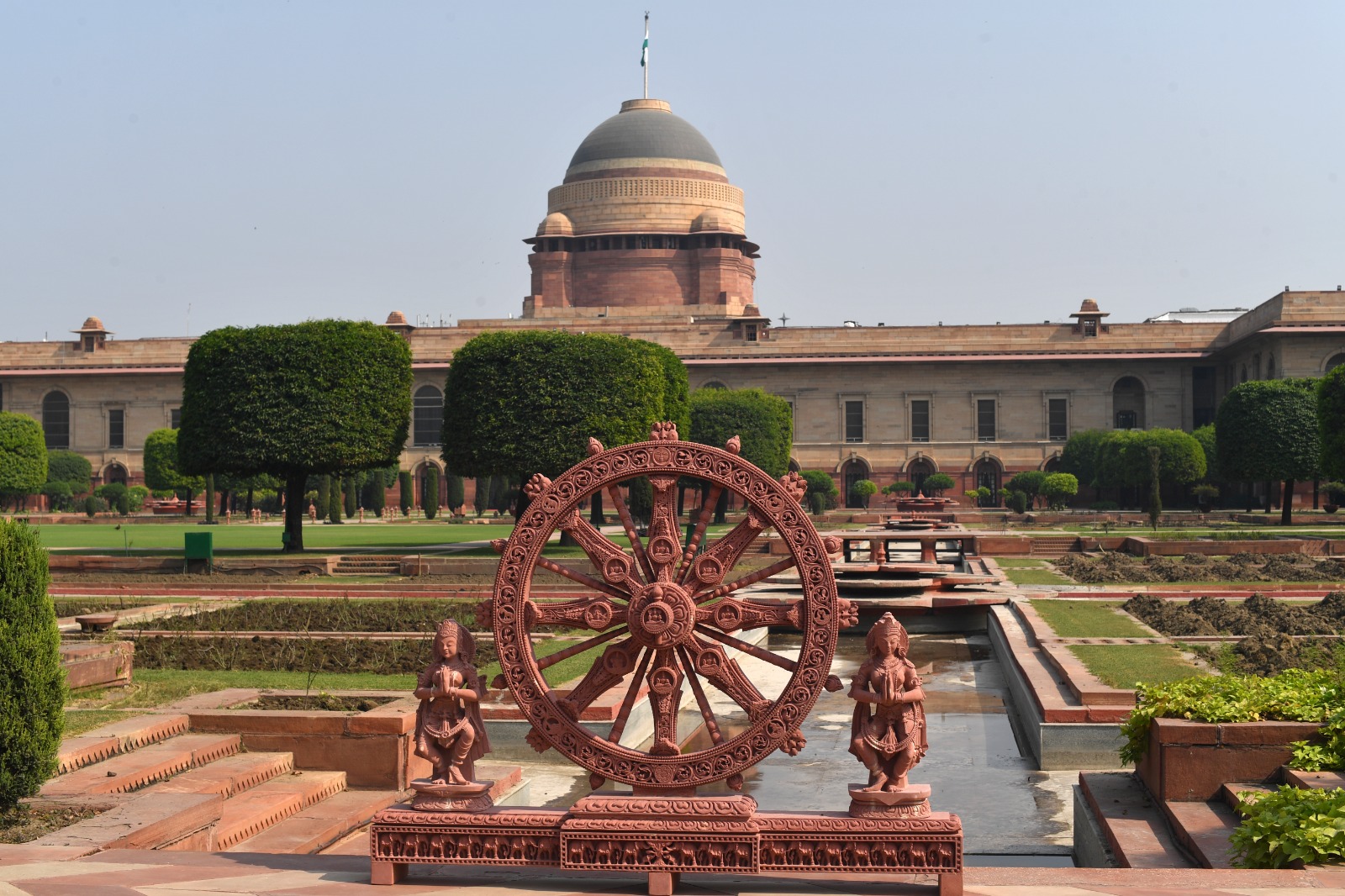
- 30 Oct 2024
In News:
- Four replicas of the Konark wheels, made of sandstone, have been installed at the Rashtrapati Bhavan Cultural Centre and Amrit Udyan.
- This initiative is aimed at showcasing India’s rich cultural heritage and promoting traditional historical elements among visitors to Rashtrapati Bhavan.
Significance of the Konark Sun Temple:
- Historical Background: The Konark Sun Temple was built in the 13th century under King Narasimhadeva I of the Eastern Ganga Dynasty in Konark, Odisha.
- Architectural Design: The temple is a colossal stone chariot with twelve pairs of intricately carved wheels, symbolizing the chariot of the Sun God.
- Materials Used: Constructed using Khondalite stones, the temple features detailed carvings that depict mythology and cultural life.
- Astronomical Significance: The temple's orientation is designed to capture the first light of the sun, reflecting ancient Indian knowledge of astronomy.
- UNESCO World Heritage Status: The Konark Sun Temple was declared a UNESCO World Heritage Site in 1984, recognizing its architectural and historical importance.
Symbolism of the Konark Wheel:
- Time and Progression: The Konark wheel represents time (Kalachakra), progression, and democracy. Its 24 spokes symbolize ancient Indian wisdom and the passage of time.
- Sundial Function: The wheel was historically used as a sundial in the temple, marking the passage of time and symbolizing India’s commitment to progress and resilience.
- National Emblem: The Konark wheel's design is also reflected in the Ashoka Chakra, the wheel on the national flag of India, symbolizing the nation’s resolve towards progress.
Cultural Heritage at Rashtrapati Bhavan:
- The installation of these replicas is part of a broader effort to introduce and promote traditional cultural and historical elements at Rashtrapati Bhavan.
- The Rashtrapati Bhavan Cultural Centre and Amrit Udyan serve as platforms to exhibit India’s diverse artistic legacy to visitors, allowing them to experience the grandeur of ancient Indian architecture and its cultural significance.
Belt and Road Initiative (BRI)
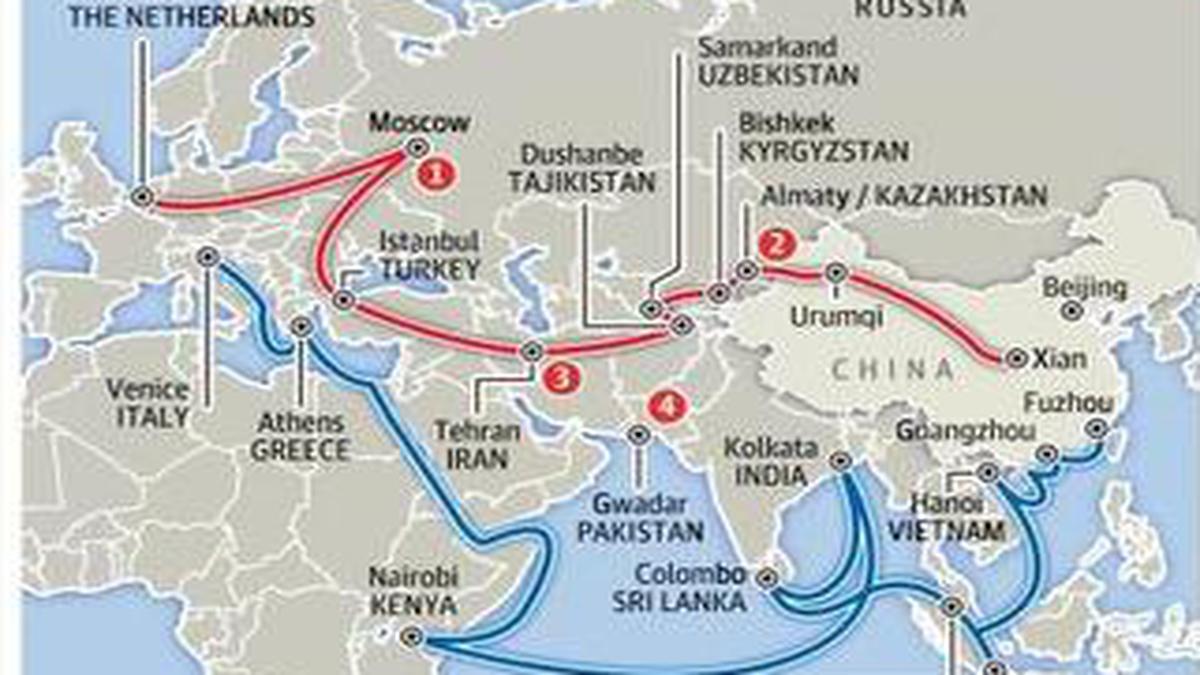
- 30 Oct 2024
In News:
- Brazilhas opted not to join China’s Belt and Road Initiative (BRI), becoming the second BRICS country after India to reject the multi-billion-dollar infrastructure project.
- Brazil prefers to explore alternative ways to collaborate with Chinese investors without signing a formal treaty, aiming to avoid the perceived risks of the BRI.
BRICS and India’s Role:
- Brazil’s decision follows India’s long-standing opposition to the BRI, particularly due to the China-Pakistan Economic Corridor (CPEC) passing through Pakistan-occupied Kashmir, which India views as a violation of its sovereignty.
- India has consistently argued that BRI projects should adhere to international norms, good governance, and transparency, emphasizing that such initiatives should be financially sustainable and not lead to debt traps.
Brazil’s Broader Economic Strategy:
- Brazil aims to balance its relationship with China, which is a major economic partner, but without being bound by the BRI. This decision reflects broader concerns within Brazil about the long-term financial sustainability of BRI projects, especially after witnessing debt crises in other countries like Sri Lanka.
Global Context and the BRI's Impact:
- The BRI, launched by China in 2013, spans several infrastructure sectors and has expanded globally, but it has faced criticism for its potential to trap smaller nations in unsustainable debt.
- India and Brazil’s resistance to the BRI highlights growing skepticism among emerging economies about the long-term implications of joining China's flagship project.
Ayurveda Day 2024

- 30 Oct 2024
In News:
Celebrated on 29th October 2024, marking the 9th Ayurveda Day, with the theme “Ayurveda Innovations for Global Health”.
- Global Participation: Over 150 countries participating, reflecting Ayurveda's growing global influence.
- Venue: Major events held at the All India Institute of Ayurveda (AIIA), New Delhi.
Key Highlights:
Significance of Ayurveda and its Global Outreach
- Ancient System: Ayurveda is one of the oldest healthcare systems, focusing on holistic well-being, rooted in Vedic traditions, and dating back over 5,000 years.
- Global Recognition: Recognized in 24 countries and Ayurveda products exported to over 100 countries.
- International Cooperation: Collaborative efforts through forums like BRICS, SCO, BIMSTEC, and WHO to integrate Ayurveda into global health policies.
Role of Dhanvantri in Ayurveda Day
- Dhanvantari Jayanti: Ayurveda Day coincides with Dhanteras, marking the birth anniversary of Lord Dhanvantri, considered the divine physician.
- Cultural & Religious Significance: Worshiped for promoting health and longevity, Dhanvantri symbolizes the healing powers of Ayurveda.
Innovations and Relevance of Ayurveda
- Research and Innovation: The theme emphasizes scientific advancements in Ayurveda to address global health challenges such as non-communicable diseases (NCDs), mental health, antimicrobial resistance (AMR), and geriatric care.
- Startup Ecosystem: Focus on fostering innovation through Ayurveda startups, particularly in the North Eastern states and across India.
Ayurveda’s Role in Addressing Global Health Issues
- Non-Communicable Diseases (NCDs): Ayurveda offers preventive and holistic treatment for diseases like diabetes, hypertension, and cardiovascular conditions.
- Mental Health: Ayurveda promotes balance in the mind, body, and spirit, with methods addressing stress, anxiety, and depression.
- Antimicrobial Resistance (AMR): Emphasizing traditional medicinal plants and natural remedies to combat resistance to antibiotics.
- Geriatric Health: Ayurveda's role in managing aging and enhancing quality of life through rejuvenation therapies.
Focus Areas for Ayurveda Innovation
- Women’s Health: Developing Ayurvedic solutions tailored for women's health issues, including reproductive health and hormonal balance.
- Workplace Wellness: Integrating Ayurveda in workplace settings to improve mental and physical health.
- School Wellness Programs: Promoting Ayurvedic practices in schools to boost immunity and overall health of children.
- Food Innovation: Modernizing Ayurvedic dietary concepts, focusing on nutritional balance and preventive health.
Government Initiatives and Digital Transformation
- Ayush Digital Platforms: Initiatives like Ayush Grid, Ayurgyan Scheme, Ayush Research Portal, and Namaste Portal are enhancing accessibility to Ayurvedic knowledge.
- WHO Integration: Ayurveda's inclusion in the WHO ICD-11 Traditional Medicine Module facilitates global standardization and recognition.
- I Support Ayurveda Campaign: A public awareness campaign aiming to garner over 250 million votes in support of Ayurveda.
Ayurvedic Education and Research
- Research Centers: Government-supported centers like the Research Centre for Innovation in Ayurveda Biology and WHO Global Traditional Medicine Centre advancing Ayurveda's global integration.
- Academic Contributions: Institutes like National Institute of Ayurveda, Institute of Teaching and Research in Ayurveda, and North Eastern Institute of Ayurveda and Homeopathy are leading innovation and education in Ayurveda.
Ayurveda and Sustainable Development Goals (SDGs)
- SDG 3 (Good Health and Well-being): Ayurveda contributes significantly to public health, with a focus on preventive care and holistic health.
- Universal Health Coverage (UHC): Ayurveda supports affordable, accessible healthcare solutions, complementing the global health agenda.
'Act4Dyslexia' Campaign

- 29 Oct 2024
In News:
- On October 27, 2024, prominent landmarks such as Rashtrapati Bhawan, Parliament House, India Gate, and the North and South Blocks in Delhi were illuminated in red to raise awareness for Dyslexia and other learning disabilities.
- Similar illuminations took place in major cities like Patna, Ranchi, Jaipur, Kohima, Shimla, and Mumbai, highlighting the importance of dyslexia awareness.
Key Highlights:
- Collaboration for Awareness:
- The campaign is organized in collaboration with UNESCO Mahatma Gandhi Institute of Education for Peace and Sustainable Development (MGIEP) and the ChangeInkk Foundation.
- Its goal is to remove stigma and foster understanding of dyslexia and other learning disabilities, which affect 20% of India’s population—around 35 million students.
- Flagging off the ‘Walk4Dyslexia’:
- The ‘Walk4Dyslexia’ event, aimed at promoting collective action for dyslexia awareness, was flagged off by Shri Rajesh Aggarwal, Secretary of the Department of Empowerment of Persons with Disabilities (DEPwD), along with Mr. Shombi Sharp, UN Resident Coordinator in India.
- The walk was organized by ChangeInkk Foundation, UNESCO MGIEP, Orkids Foundation, and Soch Foundation.
- Growth of the Campaign:
- The Act4Dyslexia campaign saw a significant expansion in 2024, with over 1,600 walks held across the country, from state capitals to villages, engaging over 4 lakh participants.
- The campaign mobilized 2 billion steps in support of dyslexia awareness, with 150+ organizations joining forces.
- Focus on Equal Rights and Opportunities:
- Dyslexia and other specific learning disabilities (SLDs) were officially recognized under the Rights of Persons with Disabilities Act, 2016. This law mandates equal educational and employment opportunities for individuals with disabilities.
- The National Education Policy (NEP) 2020 further emphasizes inclusive education, calling for early identification, teacher capacity building, and necessary support and accommodations.
- Understanding Dyslexia:
- Dyslexia is often misunderstood as a sign of being a "slow learner", but people with dyslexia often excel in areas like logical reasoning, problem-solving, and innovation.
- Notably, 40% of self-made millionaires have dyslexia, and historical figures like Albert Einstein were also dyslexic.
- Global Impact:
- The campaign aligns with the Sustainable Development Goals (SDGs), aiming to unlock the untapped potential of individuals with learning disabilities, thereby contributing to societal development at a global level.
New Disability Certificate Rules (RPwD Rules, 2024)
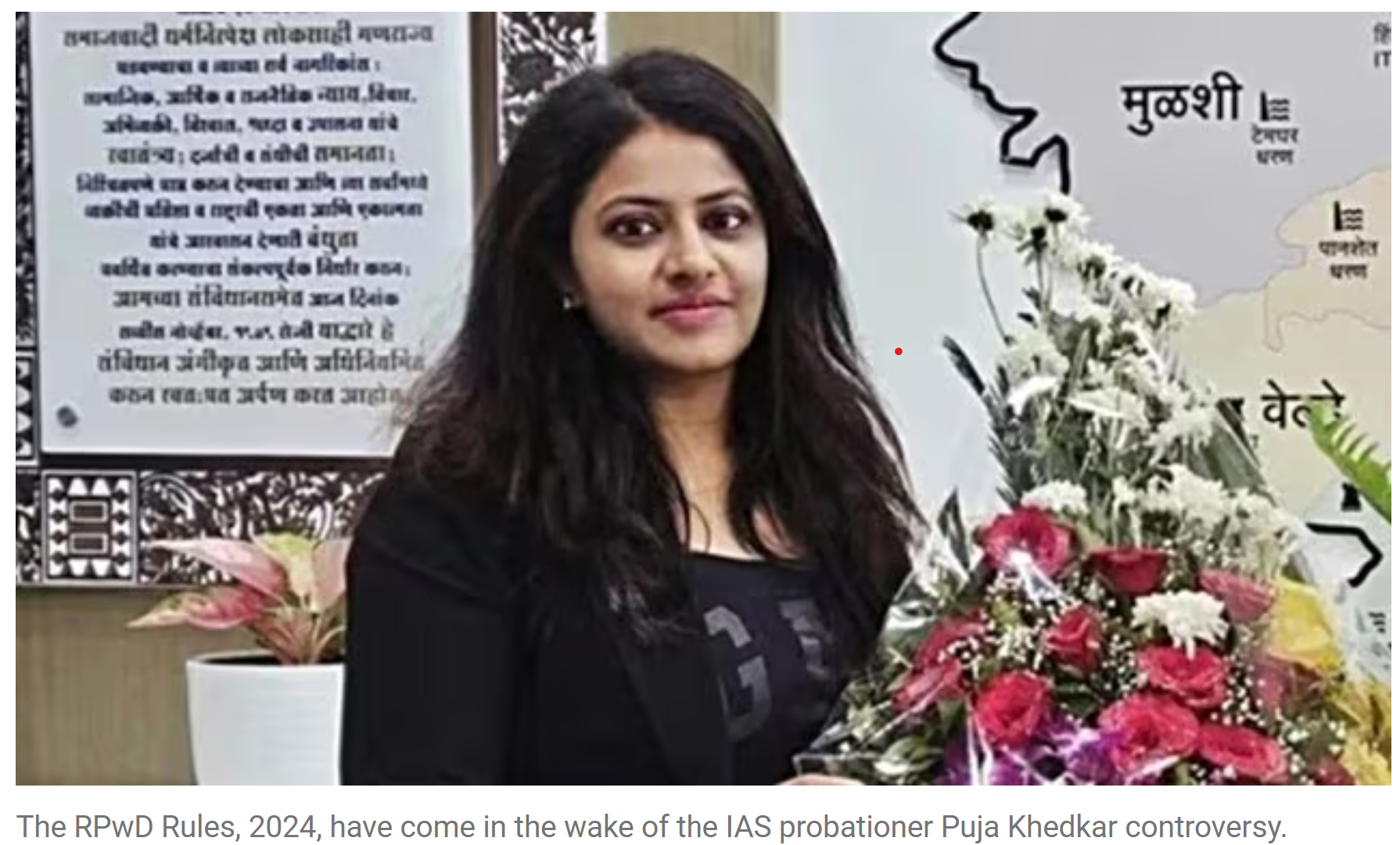
- 29 Oct 2024
In News:
- The Rights of Persons with Disabilities (RPwD) Rules, 2024, were amended by the Union Government in the wake of the Puja Khedkar controversy, where an IAS probationer was dismissed for alleged forgery in her disability and caste certificates.
- National Platform for the Rights of the Disabled (NPRD) has called for a rollback of the new rules, citing that they make the process of obtaining disability certificates more stringent and cumbersome.
Key Changes Under the New RPwD Rules, 2024
- Authority for Issuing Disability Certificates:
- Only a designated medical authority or a notified competent medical authority at the district level can issue disability certificates.
- NPRD had proposed that experts from non-profits also be authorized to carry out checks, but this suggestion was not accepted.
- Colour-Coded UDID Cards:
- The new rules introduce colour-coded UDID cards to represent levels of disability:
- White (general disability)
- Yellow (moderate disability)
- Blue (severe disability with 80% or higher).
- The new rules introduce colour-coded UDID cards to represent levels of disability:
- Mandatory Online Applications:
- Applicants are now required to apply for disability certificates online, which could be problematic for individuals who lack access to the internet, smartphones, or are digitally illiterate.
- The NPRD has urged the government to retain the option for in-person applications.
- Extended Time for Certificate Issuance:
- The new rules extend the time for issuing disability certificates from one month to three months.
- Reapplication Requirement:
- If there is no action taken on an application for two years, the applicant will have to reapply, which the NPRD considers unacceptable, as it punishes disabled individuals for system failures.
NPRD's Concerns
- Regressive and Burdensome:NPRD believes the amendments are regressive, adding more hurdles for genuine persons with disabilities to access certificates, which are crucial for identification and entitlement to services.
- Lack of Accountability:The NPRD argues that the rules do not address the systemic issues highlighted by the Puja Khedkar case, such as the lack of accountability at various levels in the certification process.
- Online Application Issues:Many people from the disabled community may struggle with technical jargon used in online applications and may not have the resources to complete the process digitally.
- Delay in Issuance:Extending the time for issuing certificates to three months could create delays for those in urgent need of certification for services or entitlements.
Mission for Integrated Development of Horticulture (MIDH)

- 29 Oct 2024
In News:
- The Union Government has decided to introduce four new components under the Mission for Integrated Development of Horticulture (MIDH), aimed at promoting modern farming techniques:Hydroponics, Aquaponics, Vertical Farming&Precision Agriculture
Key Features of MIDH:
- MIDH is a Central Sponsored Scheme (CSS) aimed at the integrated development of various horticulture crops, including:
- Fruits, vegetables, root and tuber crops, mushrooms, spices, flowers, aromatic plants, coconut, cashew, cocoa, and bamboo.
- The scheme focuses on pre-production, production, post-harvest management, processing, and marketing activities.
Revision of Operational Guidelines and Cost Norms:
- The Ministry of Agriculture and Farmers' Welfare is revising the MIDH operational guidelines and cost norms, which were last updated in April 2014.
- The revised guidelines are expected to be released within one month.
- Cost norms are likely to increase by 20% compared to the existing rates, addressing concerns from various states about outdated guidelines.
Reason for Revision:
- Several states, including Odisha, have raised concerns over the old rates under MIDH. For example, Odisha’s Agriculture Minister highlighted that the state was still using 10-year-old rates.
- The Union Cabinet had already approved the rationalization of all CSS operating under the Ministry into two umbrella schemes:
- Pradhan Mantri Rashtriya Krishi Vikas Yojana (PM-RKVY)
- Krishonnati Yojana (KY)
Growth in India's Horticulture Sector:
- India’s horticulture production has significantly increased in recent years:
- Total production reached 334.60 million metric tonnes in 2020-21, up from 240.53 million metric tonnes in 2010-11.
- India is now the second largest producer of fruits and vegetables globally, surpassing food grain production.
- MIDH Annual Budget:The annual allocation for MIDH in the current financial year (2024-25) is ?2,000 crore.
Greenhouse Gas Levels Hit Record High in 2023: World Meteorological Organization (WMO)
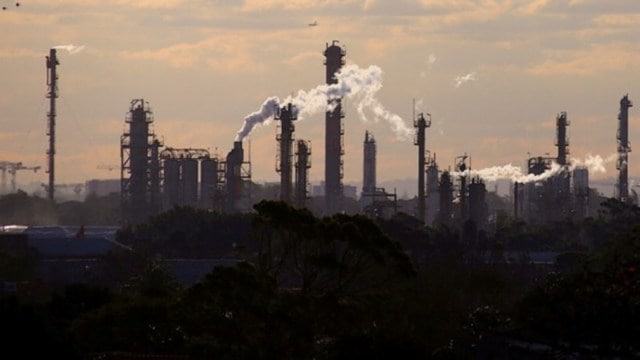
- 29 Oct 2024
In News:
According to the WMO, the last time the earth had a similar CO2 concentration was 3-5 million years ago, when temperatures were 2-3°C higher and sea levels were 10-20 metres higher than they are now
Key Highlights:
- Record High Greenhouse Gas (GHG) Levels:
- In 2023, annual mean carbon dioxide (CO2) levels rose by 2.3 parts per million (ppm), reaching a new record of 420 ppm.
- This marks the 12th consecutive year with an increase of over 2 ppm in CO2 levels.
- Historical Context:
- CO2 levels not seen in 3-5 million years, when temperatures were 2-3°C higher, and sea levels were 10-20 meters higher than they are today.
- Key GHGs at Record Highs:
- The globally averaged surface concentrations of CO2, methane, and nitrous oxide all reached new highs in 2023.
- Contributors to the Increase in CO2:
- Natural Variability: Natural factors such as large vegetation fires and reduced carbon absorption by forests contributed to higher CO2 levels.
- Human Activity: High fossil fuel emissions from human and industrial activities also played a major role.
- El Niño Phenomenon: The El Niño event led to higher temperatures and drier conditions, exacerbating the rise in GHG levels through increased wildfires and reduced carbon absorption by land sinks.
- Climate Feedback Loop Concerns:
- The WMO warned of a vicious cycle:
- Climate change could cause ecosystems to become larger sources of GHGs.
- Wildfires could release more carbon, and warmer oceans may absorb less CO2, leading to more CO2 remaining in the atmosphere, accelerating global warming.
- The WMO warned of a vicious cycle:
- Radiative Forcing:
- Radiative forcing (the warming effect on climate) from long-lived GHGs has increased by 51.5% from 1990 to 2023, with CO2 contributing 81% of this increase.
- Methane Concerns:
- Methane saw its largest three-year increase between 2020 and 2022.
- This increase was linked to warmer temperatures and wetter land conditions during the 2020-2022 La Niña conditions, which caused an uptick in methane emissions from natural wetlands.
- Long-Term Impact of CO2:
- Given CO2's long atmospheric lifetime, even with rapid emissions reductions, the warming effect will persist for several decades.
C-295 Aircraft
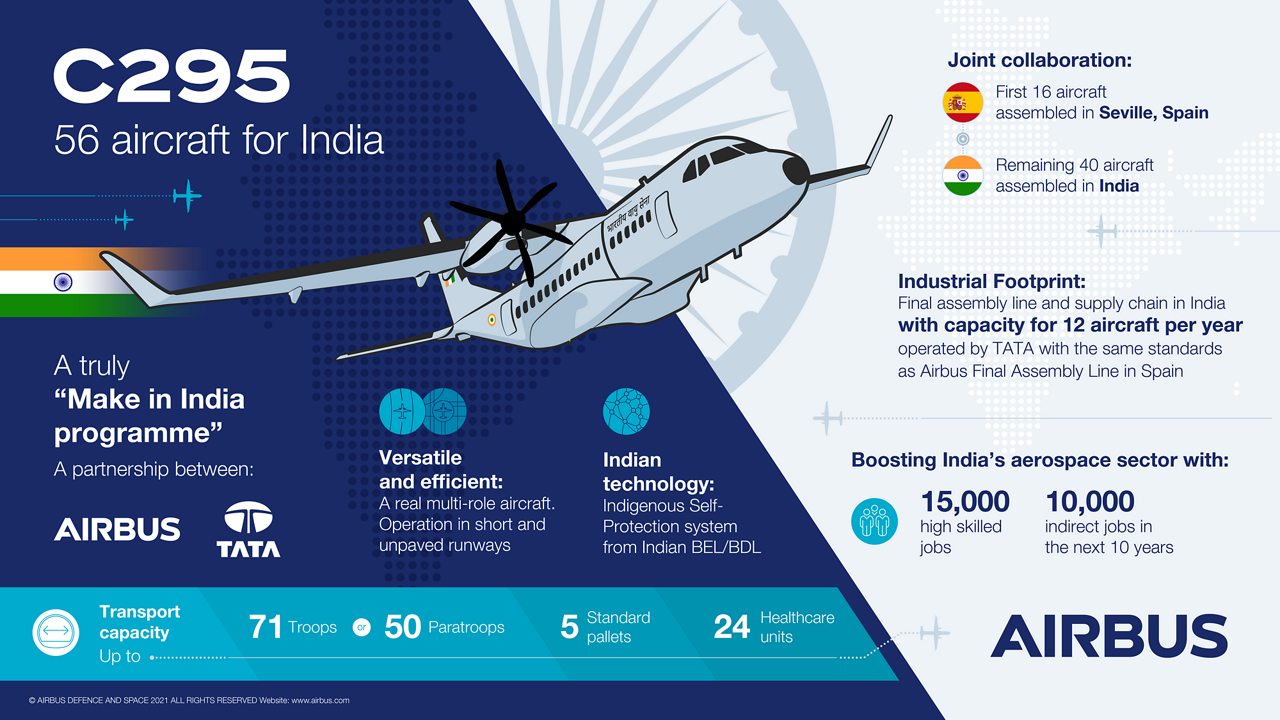
- 29 Oct 2024
In News:
- Recently, PM Narendra Modi inaugurated the Final Assembly Line (FAL) plant in Vadodara, Gujarat, for the manufacturing of the C-295 aircraft.
- The plant is a joint venture between Tata Advanced Systems Ltd (TASL) and Airbus.
- This is the first private sector final assembly line for military aircraft in India.
Key Details:
- Manufacturing Timeline
- Contract: In September 2021, India signed a ?21,935 crore deal with Airbus Defence and Space to procure 56 C-295 aircraft to replace the IAF’s ageing Avro-748 fleet.
- Production Plan:
- The first 16 aircraft will be delivered from Airbus’s plant in Seville, Spain, between September 2023 and August 2025.
- The remaining 40 aircraft will be produced in India by TASL, with the first “Made-in-India” C-295 rolling out in September 2026.
- The entire fleet (56 aircraft) is expected to be delivered by August 2031.
- Key Features and Specifications
- Type: Tactical transport aircraft with a capacity of 5 to 10 tonnes.
- Maximum Speed: 480 km/h.
- Cabin Dimensions: 12.7 meters (41 feet 8 inches), the longest unobstructed cabin in its class.
- Passenger Capacity: Can accommodate up to 71 seats.
- Cargo Handling: Rear ramp door for quick loading/unloading and para-dropping.
- Short Take-off and Landing (STOL): Capable of operating from airstrips as short as 2,200 feet.
- Significance for the Indian Air Force (IAF)
- The C-295 will enhance the medium-lift tactical capability of the IAF.
- It will replace the ageing Soviet-origin AN-32 aircraft, which are nearing the end of their operational life.
- The C-295 will bridge the capability gap in troop and cargo transport over short and medium distances.
- Indigenous Content
- Indigenous Electronic Warfare Suite: All 56 aircraft will be equipped with an indigenous electronic warfare suite, developed by Bharat Electronics Ltd (BEL) and Bharat Dynamics Limited (BDL).
- Made-in-India Components: 96% of the work that Airbus does in Spain will be done at the Vadodara plant, making it one of the highest-ever indigenous contributions for an aircraft in India.
- Global Operations of the C-295
- The C-295 is operational in various challenging terrains worldwide, including:
- Brazilian jungles, Colombian mountains (South America)
- Deserts of Algeria and Jordan (Middle East)
- Cold climates of Poland and Finland (Europe)
- Military operations in Chad, Iraq, and Afghanistan.
- The C-295 is operational in various challenging terrains worldwide, including:
- Roles and Capabilities
- Tactical Transport: Can transport troops and supplies from main airfields to forward operating airfields.
- Short Take-off and Landing (STOL): Capable of operating from short, unprepared airstrips.
- Low-level Operations: Can conduct low-speed, low-level missions at 110 knots.
- Other Missions: Suitable for casualty evacuation, special missions, disaster relief, and maritime patrol.
ISRO’s First Electric Propulsion-Led Spacecraft (TDS-1)

- 28 Oct 2024
In News:
India's first home-grown electric propulsion satellite to be launched in Dec.
Key Highlights:
- Objective of TDS-1:
- Purpose: To demonstrate electric propulsion technology for satellite steering, using solar-powered ionized gas.
- Goal: Reduce reliance on chemical fuel, making satellites lighter and more efficient.
- Key Benefits of Electric Propulsion:
- Weight Reduction: The technology can significantly cut down satellite mass. For example, a satellite weighing 4 tonnes could be reduced to around 2 tonnes.
- Fuel Efficiency: By using electric propulsion, the need for chemical fuel is minimized, allowing for a more efficient journey to geostationary orbit.
- Technology Details:
- Fuel Used: Gases like Argon are ionized using solar power to create propulsion.
- Process: The ionized gas is expelled at high speeds to generate thrust, pushing the satellite towards its desired orbit.
- Historical Context:
- The technology was first used in GSAT-9 (South Asia Satellite) in 2017 but with imported Russian components.
- TDS-1 marks the first fully indigenous development of electric propulsion technology by ISRO, highlighting India’s increasing space autonomy.
- Significance for India’s Space Program:
- Self-Reliance: TDS-1 reflects ISRO’s growing capacity to develop advanced space technologies domestically.
- Future Prospects: This breakthrough is expected to lead to more efficient satellite designs, enhancing India’s competitiveness in the global space industry.
Emissions Gap Report 2024

- 28 Oct 2024
In News:
The United Nations Environment Programme (UNEP) recently published the Emissions Gap Report 2024, in anticipation of the COP29 meeting of the UNFCCC to be held in Baku, Azerbaijan.
Key Highlights:
- Current Trajectory of Global Warming:
- If countries continue with current environmental policies, global temperatures are expected to rise by 3.1°C above pre-industrial levels.
- This is significantly higher than the Paris Agreement target of limiting global warming to well below 2°C, with an effort to cap it at 1.5°C.
- Paris Agreement at Risk:
- Even if all Nationally Determined Contributions (NDCs) are fully implemented (including both unconditional and conditional emissions reduction targets), the world would still experience 2.6°C of warming by 2030.
- This presents a major challenge to achieving the Paris Agreement’s climate goals.
- Urgent Need for Action:
- To limit global warming to 1.5°C, greenhouse gas emissions must peak before 2025 and decline by 43% by 2030.
- The report highlights the emission gap between current pledges and what is required to meet the 1.5°C goal.
- Record High Emissions:
- Global greenhouse gas emissions hit a record 57.1 gigatons of CO? equivalent in 2023.
- This represents an increase of 1.3% compared to 2022, continuing the upward trend from the previous decade.
- India’s Emissions:
- India’s greenhouse gas emissions grew by 6.1% between 2022 and 2023.
- Per capita emissions in India were 2.9 tCO?e in 2022, significantly lower than China (11 tCO?e) and the U.S. (18 tCO?e).
- G20 Countries’ Contribution:
- G20 countries, excluding the African Union, contributed 77% of global emissions in 2023.
- The six largest emitters (including China, U.S., and India) were responsible for 63% of global emissions.
- This shows a significant imbalance in emissions, with developed countries having much higher per capita emissions compared to developing nations like India and Africa.
- Necessary Emissions Cuts:
- To keep the 1.5°C target within reach, global emissions need to be cut by at least 7.5% annually until 2035.
- Cost of bridging the emissions gap: Achieving net-zero by 2050 will require USD 900 billion to USD 2.1 trillion annually, approximately 1% of global GDP.
- Emission Reduction Pathways:
- Renewable Energy: Scaling up solar and wind energy technologies could contribute up to 27% of the required emissions reductions by 2030.
- Forest Conservation: Protecting and restoring forests could provide 20% of the required emissions reductions by 2030.
- Other crucial measures include improving energy efficiency, transitioning to electric vehicles, and focusing on fuel switching in key sectors like transport, industry, and buildings.
- Disparities in Emissions:
- Despite changes over the past two decades, large disparities remain between emissions across regions.
- Developed countries have three times higher per capita emissions compared to the global average, while India, the African Union, and least developed countries continue to have much lower emissions.
- Call to Action:
- UNEP Executive Director Inger Andersen urged countries to act now, stating: “No more hot air, please.” The urgency is to ramp up climate pledges and ensure stronger actions in the upcoming COP29 talks in Baku, Azerbaijan (November 2024), where nations must work to get on a 1.5°C pathway.
United Nations Environment Programme (UNEP)
- Established: 1972, following the United Nations Conference on the Human Environment in Stockholm.
- Headquarters: Nairobi, Kenya.
- Governing Body: The United Nations Environment Assembly (UNEA), which is the world’s highest-level decision-making body on environmental matters, with 193 Member States.
- Programs & Initiatives: UNEP leads global efforts on climate action, ecosystem restoration, clean seas, and supports the Sustainable Development Goals (SDGs).
- Reports: UNEP publishes crucial assessments like the Emissions Gap Report, Global Environment Outlook, and Adaptation Gap Report, influencing global environmental policies.
Hong Kong Discovers Dinosaur Fossils
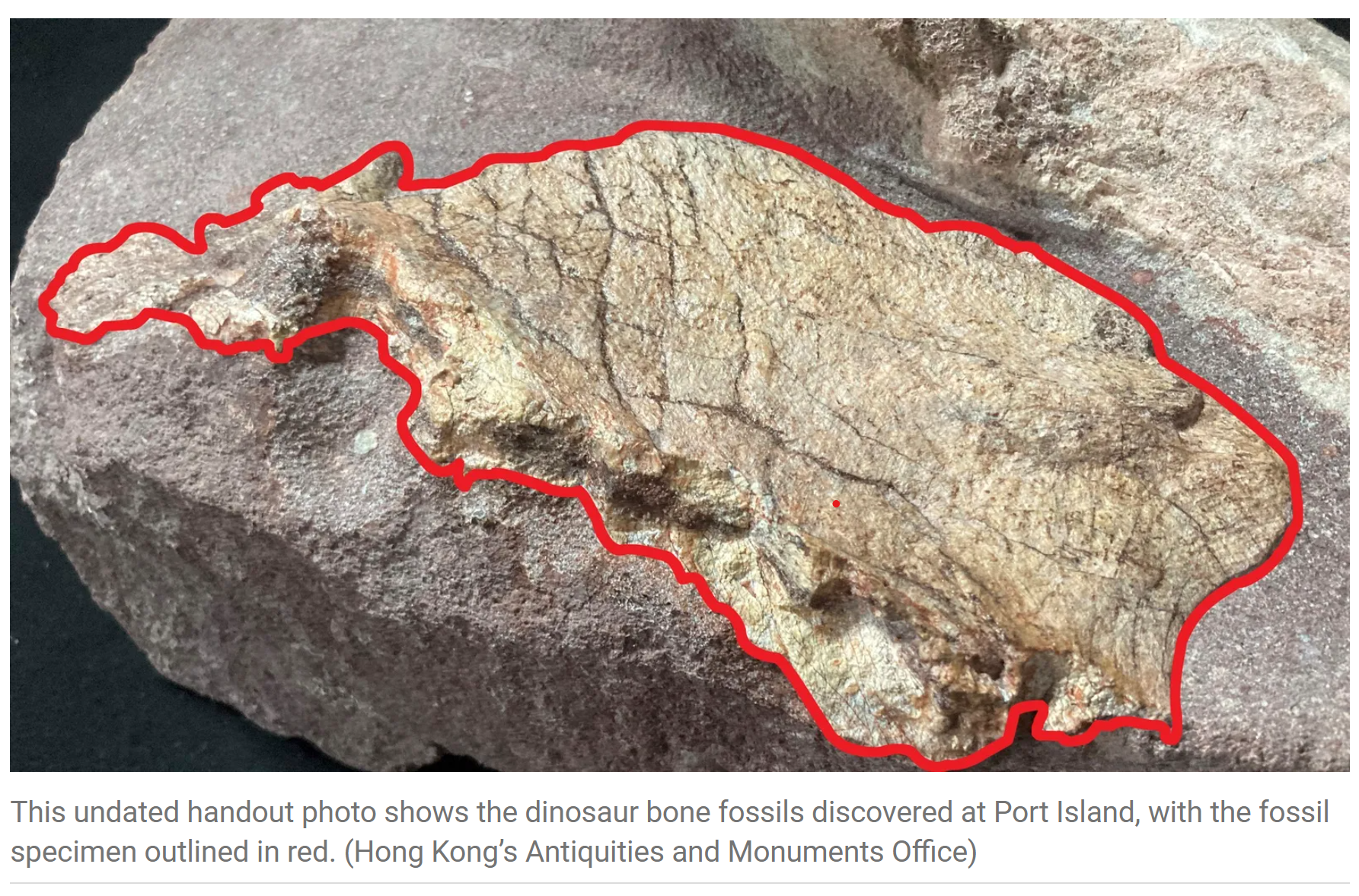
- 28 Oct 2024
In News:
Hong Kong discovers dinosaur fossils for the first time
Key Details:
-
- Significance: This marks the first-ever discovery of dinosaur fossils in Hong Kong.
- Time Period:The fossils date back to the Cretaceous Period, approximately 145 million to 66 million years ago.
- Fossil Details:The fossils belong to a large dinosaur, but further studies are required to determine the exact species.Initial analysis suggests the dinosaur may have been buried by sand and gravel after death, later being washed to the surface by a flood before being buried again.
- Site and Protection:Port Island, part of a geopark, is closed to the public to facilitate ongoing fossil investigations and excavation work.
- Geological and Archaeological Importance:The discovery underscores the significance of Hong Kong's geoparks and its role in preserving and showcasing natural history.This finding contributes to global understanding of prehistoric life, especially in the Cretaceous period.
2024 Global Nature Conservation Index (NCI)
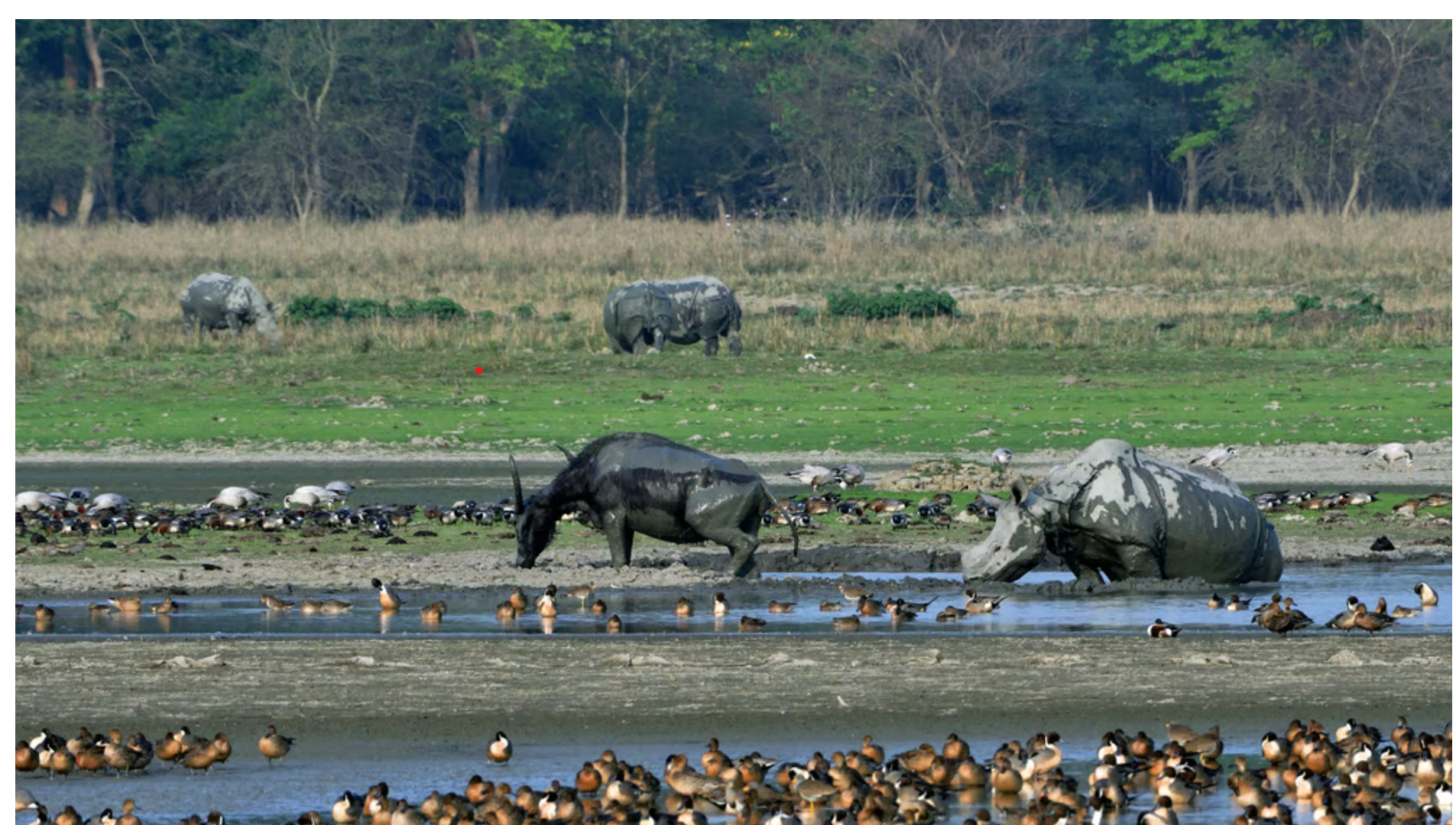
- 28 Oct 2024
In News:
India with an abysmal score of 45.5 (out of 100) has been ranked 176th in the Global Nature Conservation Index, 2024.
India's Ranking and Score:
- Rank: India ranks 176th out of 180 countries.
- Score: 45.5 out of 100.
- Context: India is listed among the five "worst performers," alongside Kiribati (180), Turkey (179), Iraq (178), and Micronesia (177).
Key Factors Affecting India’s Ranking:
- Inefficient Land Management: The main contributing factor to India's low ranking.
- Threats to Biodiversity: Rising threats due to habitat loss, deforestation, climate change, and pollution.
- Deforestation: Between 2001 and 2019, India lost 23,300 sq. km of tree cover, exacerbating biodiversity loss.
Focus Areas of the Nature Conservation Index (NCI):
- Land Management: Inefficient land use practices, with 53% of land converted for urban, industrial, and agricultural purposes.
- Biodiversity Threats: Habitat loss, fragmentation, and declining populations of marine and terrestrial species.
- Governance and Capacity: Challenges in enforcement of laws and governance structures that support conservation.
- Future Trends: India faces both opportunities and challenges, given its high population density and rapid development.
Key Findings:
- Land Conversion and Urbanization: High rates of land conversion (53%) for development purposes, contributing to habitat loss.
- Soil Pollution: Issues with pesticide use and soil pollution (low nitrogen index of 0.77), affecting soil health.
- Marine Conservation: Only 0.2% of national waterways and none within the Exclusive Economic Zone (EEZ) are protected.
- Deforestation Impact: Loss of 23,300 sq. km of forest between 2001-2019.
- Biodiversity Decline: Despite 40% of marine species and 65% of terrestrial species in protected areas, biodiversity continues to decline—67.5% of marine species and 46.9% of terrestrial species face population decreases.
Marine and Terrestrial Conservation:
- Marine Areas: Need for greater investment in marine conservation, as India's marine protected areas (MPAs) are limited.
- Protected Areas: While 7.5% of India’s terrestrial area is protected, significant threats like climate change and habitat fragmentation persist.
Biodiversity and Climate Change:
- Climate Change Risks: Impacts on vulnerable ecosystems, including coral reefs and alpine regions, further threaten biodiversity.
- Population Growth: India’s rapidly growing population (one of the highest in the world) places constant pressure on natural resources and ecosystems.
Illegal Wildlife Trade:
- Global Ranking: India is the fourth-largest illegal wildlife trader globally, with an annual trade worth approximately £15 billion.
- Call for Action: Stronger enforcement of wildlife protection laws and international cooperation are crucial to combat illegal wildlife trade.
SDGs and India’s Conservation Challenges:
- SDG 14 (Life Below Water) and SDG 15 (Life on Land): India faces significant challenges in meeting these Sustainable Development Goals, particularly in protecting marine life and terrestrial ecosystems.
Recommendations for Improvement:
- Stronger Political Will: Political commitment is essential for passing laws that promote sustainable development and biodiversity conservation.
- Enforcement and Funding: Increased funding for environmental initiatives and better enforcement of conservation policies are necessary to address the conservation challenges.
- Sustainable Development: Integrating sustainable land use practices and improving governance structures for conservation are key areas for focus.
New Space Missions and Developments

- 28 Oct 2024
In News:
The Space Commission also approved a joint moon mission with Japan called the Lunar Polar Exploration Mission. For LUPEX, ISRO is developing a different moon lander than the one it used for Chandrayaan-3
New Space Missions and Developments
- Chandrayaan-4 (Moon Mission):
- Type: Sample-return mission.
- Launch: Expected by 2027.
- Cost: ?2,104 crore.
- Objective: Sample collection of moon soil and rock to return to Earth.
- Mission Details: Two LVM-3 launch vehicles will launch components that will dock in Earth orbit before heading to the moon. The samples will be sent back using a bespoke canister.
- Lunar Polar Exploration Mission (LUPEX):
- Collaboration: Joint mission with Japan.
- Objective: Exploration of lunar poles with a new lander design, intended for potential crewed missions in future.
- Venus Orbiter Mission:
- Launch Window: March 2028.
- Cost: ?1,236 crore.
- Objective: Study Venus' surface and atmosphere to understand planetary evolution in the Solar System.
- Next Generation Launch Vehicle (NGLV):
- Development Budget: ?8,240 crore for first three development flights.
- Objective: A new launcher developed with private sector collaboration for future space missions.
Cabinet Approvals for Space Initiatives
- Human Spaceflight Programme (Gaganyaan):
- Four new missions under Gaganyaan, including an uncrewed Gaganyaan flight.
- Focus on developing technologies for India’s first space station, Bharatiya Antariksh Station (BAS), planned by 2028.
- Space-Based Surveillance (SBS) Missions:
- Phase 3: Approval for building 21 ISRO satellites, with 31 additional satellites by private companies.
- Total Cost: ?26,968 crore.
- Development of a Third Launch Pad:
- To support the NGLV and additional space missions at Sriharikota.
Upcoming Satellite Missions
- NISAR (NASA-ISRO Synthetic Aperture Radar):
- Launch: Early 2025 on a GSAT launch vehicle.
- Purpose: Earth observation using advanced radar technology.
- Issue: Protective coating added due to high temperatures during testing.
- Proba-3 (European Space Agency):
- Launch: November 29, 2024, aboard PSLV-XL.
- Objective: Study the Sun’s corona using two satellites in formation, mimicking an eclipse to capture unique solar data.
Private Sector Involvement
- Manastu Space & Dhruva Space:
- Collaboration: Testing green propulsion technology for the LEAP-3 mission.
- Technology: Hydrogen-peroxide-based green propulsion system.
- Launch: LEAP-3 mission in 2025.
- Bellatrix Aerospace:
- Project: Prototype satellite for ultra-low earth orbit at 200 km altitude.
- Ananth Technologies:
- Achievement: First private company to assemble, integrate, and test Space Docking Experiment (SpaDEx) satellites for ISRO.
Space Science and Research Updates
- Chandrayaan-3:
- Findings: The crater where Chandrayaan-3 landed is older than the South Pole-Aitken Basin (4.2-4.3 billion years old).
- Data Source: Optical High-Resolution Camera (Chandrayaan-2) and Pragyaan rover (Chandrayaan-3).
- Astrosat (India’s First Space Observatory):
- Mission Life: Expected to last two more years (originally planned for 5 years).
- Significance: Contributed to over 400 published papers based on multi-wavelength space observatory data.
ISRO-DBT Agreement for Biotechnology Experiments in Space
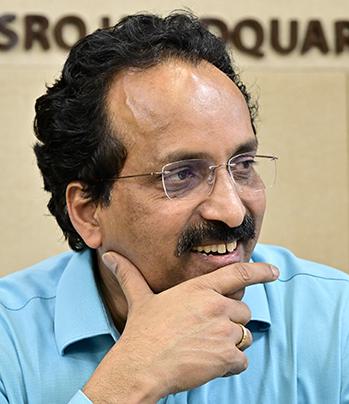
- 27 Oct 2024
In News:
- The Indian Space Research Organisation (ISRO) and the Department of Biotechnology (DBT) have signed an agreement to conduct biotechnology experiments on the upcoming Bharatiya Antariksh Station (BAS).
- Timeline for BAS:
- The BAS is expected to be operational from 2028-2035, with the initial module launches slated for 2028 and full expansion by 2035.
- It will be located at an altitude of 400 km above Earth and will support 15–20-day missions in space.
Focus Areas of Research
- Health Impact:
- Weightlessness & Muscle Health: Studying the effects of zero-gravity on muscle loss during space missions.
- Radiation Effects: Investigating how space radiation impacts astronaut health over long durations.
- Bio-Manufacturing:
- Algae Studies: Exploring algae for potential use in nutrient-rich, long-lasting food sources and biofuel production.
- Food Preservation: Identifying algae varieties that can help preserve food for longer periods in space.
- Integration with Gaganyaan Mission:
- Experiments may also be conducted during uncrewed test flights for the Gaganyaan mission (India’s first crewed mission to space, scheduled for 2025-2026).
BioE3 (Biotechnology for Economy, Environment and Employment) Policy
- Objective: The BioE3 policy aims to boost bio-manufacturing in India, which is projected to contribute $300 billion to the Indian economy by 2030.
- Key Focus Areas:
- High-Value Bio-Based Products: Promotes the development of bio-based chemicals, biopolymers, enzymes, and smart proteins.
- Climate-Resilient Agriculture & Carbon Capture: Aims to strengthen agricultural practices to withstand climate change and promote carbon capture technologies.
- Healthcare & Nutrition: Focuses on advancements in biotherapeutics, functional foods, and regenerative medicine.
- Marine & Space Biotechnology: Encourages research in space and marine biotechnology for new applications.
- Innovation & Entrepreneurship: Supports R&D-driven entrepreneurship through the establishment of bio-manufacturing hubs, bio-AI centers, and biofoundries.
- Employment Growth: Aims to create skilled jobs in the growing bioeconomy, promoting green growth and sustainable industries.
Bharatiya Antariksh Station (BAS) Overview
- Structure: The station will consist of:
- Command Module
- Habitat Module
- Propulsion Systems
- Docking Ports
- Objective: To support long-term research in space life sciences and bio-manufacturing, with a focus on human health, food sustainability, and biotechnology innovations.
21st Livestock Census
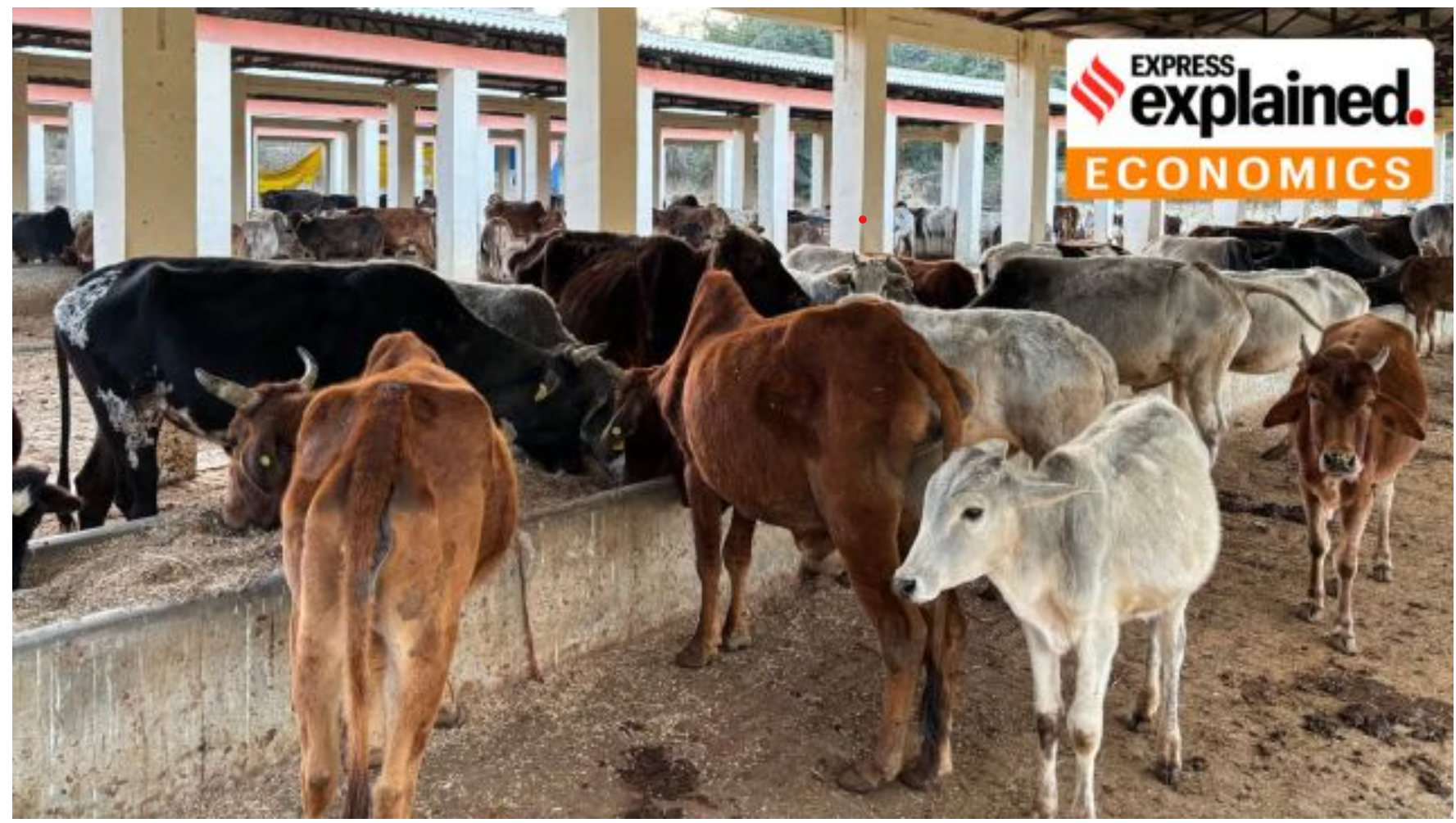
- 27 Oct 2024
In News:
The Livestock Census is a crucial tool for understanding the current status of India’s livestock sector and its contribution to the economy and society.
What is the Livestock Census?
- The Livestock Census is a nationwide survey conducted every five years to assess the number, species, breed, age, sex, and ownership status of domesticated animals and poultry, including stray animals.
- Purpose: It helps in collecting comprehensive data about the livestock population and their role in the economy and society.
- First Census: The first livestock census was conducted in 1919, and this is the 21st edition.
- Next Census: The 21st Livestock Census will be conducted between October 2024 and February 2025 by approximately 87,000 enumerators across 30 crore households in India.
Animals Covered in the Census
- The census will account for 16 species of animals, including:
- Cattle, Buffalo, Mithun, Yak, Sheep, Goat, Pig, Camel, Horse, Ponies, Mule, Donkey
- Dog, Rabbit, Elephant
- Poultry: Fowl, Chicken, Duck, Turkey, Geese, Quail, Ostrich, and Emu
- The census will also collect data on 219 indigenous breeds of these species recognized by the ICAR-National Bureau of Animal Genetic Resources (NBAGR).
Objectives of the Livestock Census
- Economic Contribution: The livestock sector contributes approximately:
- 30% of the Gross Value Added (GVA) of the agricultural sector
- 4.7% of India's overall GVA
- It plays a crucial role in rural employment, particularly in poultry and animal husbandry.
- Policy Formulation and Planning:
- The data from the census is critical for formulating and implementing policies related to livestock, ensuring sustainable growth in the sector.
- It helps in monitoring and estimating GVA from livestock.
- Sustainable Development Goals (SDGs):
- Provides vital data for tracking the progress towards Goal 2 of SDGs (Zero Hunger) and Target 2.5, which focuses on maintaining genetic diversity in livestock, particularly addressing local breeds at risk of extinction (Indicator 2.5.2).
- Sectoral Monitoring:
- The census helps in monitoring the performance and health of India’s livestock sector, which is vital for ensuring food security, rural livelihoods, and economic growth.
Key Features of the 21st Livestock Census
- Digitization:
- Like the 2019 Census, this year’s census will be fully digitized, with data collected via a mobile application.
- Digital Monitoring: A dashboard will monitor progress at various levels, and the latitude and longitude of the data collection locations will be recorded.
- A software-based livestock census report will be generated to streamline analysis.
- New Data Points:
- For the first time, data on pastoral animals and pastoralists will be collected, focusing on their socio-economic status and livestock holdings.
- Granular Data: The census will gather information on:
- Proportions of households that rely on livestock for major income.
- Gender-based data on stray cattle.
- Extended Scope:
- In addition to animal population statistics, the census will also focus on the socio-economic contributions of the livestock sector, gender inclusion, and employment.
Significance of the Livestock Census
- A Comprehensive Livestock Profile:
- Provides a holistic view of livestock population and the interlinkages between animal husbandry, agriculture, and rural economies.
- Assists in the management and preservation of indigenous animal breeds.
- Informed Decision-Making:
- Helps policymakers, researchers, and development organizations in formulating strategies for sectoral growth, genetic diversity preservation, and livelihood enhancement for rural communities.
- Monitoring Livestock Health:
- The census helps in tracking the health and sustainability of India’s livestock population, which is essential for ensuring food security and preventing animal diseases.
Findings of the 2019 Livestock Census
- Total Livestock Population: 535.78 million
- Cattle: 192.9 million
- Goats: 148.88 million
- Buffaloes: 109.85 million
- Sheep: 74.26 million
- Pigs: 9.06 million
- Other species contributed a small fraction to the total livestock population (0.23%).
Launch of 'Abhay'

- 27 Oct 2024
In News:
Recently, ‘Abhay’, the seventh ship in the Anti-Submarine Warfare Shallow Water Craft (ASW SWC) series was launched.
Key Details:
Project Background
- Contract Details: The Ministry of Defence (MoD) signed a contract with Garden Reach Shipbuilders & Engineers (GRSE), Kolkata, in April 2019 for the construction of eight ASW SWC ships.
- Class of Ships: The Arnala-class ships are intended to replace the older Abhay-class ASW Corvettes currently in service with the Indian Navy.
- Purpose: These ships are designed for anti-submarine warfare (ASW) operations in coastal waters and to conduct Low-Intensity Maritime Operations (LIMO) and mine-laying activities.
Design and Features of 'Abhay'
- Dimensions:
- Length: 77 meters
- Width: 10 meters
- Speed and Endurance:
- Maximum speed: 25 knots
- Endurance: 1800 nautical miles (NM).
- Propulsion: Waterjet-propelled, offering agility and swift response in tactical situations.
- Indigenous Content: Over 80% indigenous content, supporting India’s Aatmanirbhar Bharat (self-reliant India) initiative in defence manufacturing.
Capabilities of the ASW SWC
- Anti-Submarine Warfare:
- Designed to conduct subsurface surveillance and anti-submarine operations in coastal waters.
- Equipped with advanced sonar systems, including Hull-Mounted Sonar and Low-Frequency Variable Depth Sonar for enhanced underwater surveillance.
- Armament and Equipment:
- Torpedoes and ASW rockets for anti-submarine operations.
- Mines for mine-laying operations.
- Close-in Weapon System (CIWS): 30 mm for close-range defence against aerial and surface threats.
- 12.7 mm Stabilized Remote-Control Guns for additional defensive capability.
Strategic Importance
- Coastal Defence: The ASW SWC ships enhance the Navy’s capability to defend India’s extensive coastline and exclusive economic zone (EEZ) against submarine threats.
- Operational Role:
- In addition to anti-submarine warfare, these ships can conduct Low-Intensity Maritime Operations (LIMO), which include operations against non-traditional threats.
- Mine-laying capability to disrupt enemy naval operations.
- Advanced Detection: These ships are equipped to track both surface and underwater targets, enabling them to coordinate operations with aircraft, strengthening maritime security.
Center for Generative AI, Srijan
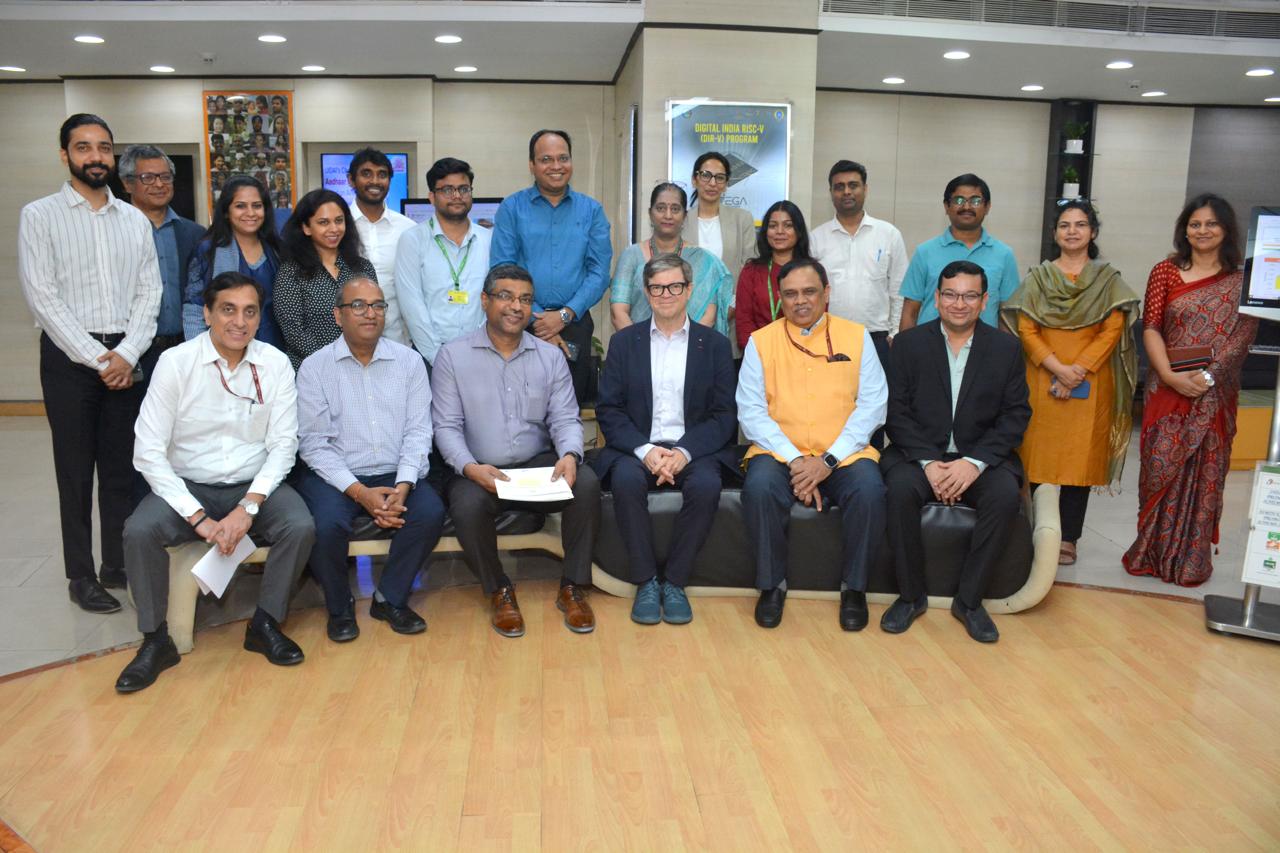
- 27 Oct 2024
In News:
IndiaAI and Meta have announced the establishment of the Center for Generative AI, Srijan (????) at IIT Jodhpur, along with the launch of the “YuvAi Initiative for Skilling and Capacity Building” in collaboration with the All India Council for Technical Education (AICTE), for the advancement of open source artificial intelligence (AI) in India.
Key Initiatives Launched
- Center for Generative AI, Srijan (????) at IIT Jodhpur:
- Focus on Generative AI (GenAI) research and innovation.
- Meta’s support for ethical and responsible development of AI technologies.
- Aim to empower researchers, students, and practitioners with the tools for responsible AI deployment.
- Focus Areas: Open science, AI policy advisory, and indigenous AI application development.
- YuvAi Initiative for Skilling and Capacity Building:
- Target: Empower 100,000 students and young developers (ages 18-30) with AI skills.
- Core Focus: Leveraging open-source Large Language Models (LLMs) for real-world solutions.
- Skills Development: Generative AI, open-source tools, and sector-specific AI applications (healthcare, education, agriculture, smart cities, mobility, and financial inclusion).
- Partnership: Collaboration with AICTE (All India Council for Technical Education).
Strategic Goals and Outcomes
- Research and Innovation:
- Strengthen India’s AI ecosystem through groundbreaking research and collaborations.
- Focus on open-source AI and indigenous AI solutions for national challenges.
- Empower India to lead in AI through ethical and responsible AI deployment.
- AI Talent Development:
- Bridge the AI talent gap by training young developers in open-source AI technologies.
- Develop AI solutions for critical sectors like healthcare, education, agriculture, smart cities, and financial inclusion.
- Program Components:
- GenAI Resource Hub with courses, case studies, and open datasets.
- Unleash LLM Hackathons for students to propose AI solutions for real-world challenges.
- Support for AI startups through an Innovation Accelerator.
Sectoral Focus and Impact
- Healthcare: AI for diagnostics, personalized medicine, and healthcare delivery.
- Education: AI tools for enhancing learning outcomes and personalized education.
- Agriculture: AI solutions for precision farming, pest control, and crop management.
- Smart Cities: AI in urban planning, traffic management, and public services.
- Mobility: AI applications in transportation, logistics, and urban mobility.
- Financial Inclusion: AI in fintech, digital payments, and financial services for underserved populations.
Additional Programs and Opportunities
- AICTE Collaboration: Mobilizing technical institutions across India to build AI capabilities.
- Master Training Activation Workshops: To introduce foundational AI concepts to students.
- Mentorship and Grants: Top AI solutions from hackathons will receive mentoring, seed grants, and market support.
- Student Startups: AI Innovation Accelerator will incubate 10 student-led AI startups experimenting with open-source models.
Pandemic Fund Project

- 27 Oct 2024
In News:
Recently, the Union Minister Shri Rajiv Ranjan Singh, Ministry of Fisheries, Animal Husbandry and Dairying launched the Pandemic Fund Project on "Animal Health Security Strengthening in India for Pandemic Preparedness and Response"in New Delhi.
Key Highlights:
Launch of Pandemic Fund Project
- Objective: Strengthening animal health security in India to enhance pandemic preparedness and response.
- Funding: $25 million initiative funded by the G20 Pandemic Fund.
- Location: New Delhi, Ministry of Fisheries, Animal Husbandry, and Dairying.
Context and Importance
- Livestock Sector: Crucial for socio-economic upliftment, contributing to employment and rural development.
- Growth in Livestock Sector: Significant progress in the last 9 years through schemes like the National Animal Disease Control Program (NADCP).
- Key Diseases Targeted:
- Foot and Mouth Disease (FMD): Aimed at eradication, with over 90.87 crore vaccines administered.
- Brucellosis: Over 4.23 crore vaccines administered.
Objectives of the Pandemic Fund Project
- Enhanced Disease Surveillance: Includes genomic and environmental monitoring for early warning systems.
- Laboratory Infrastructure Development: Upgradation for better diagnosis and disease management.
- Cross-Border Collaboration: Strengthening partnerships for global monitoring of zoonotic diseases.
- Integrated Monitoring System: Creation of a robust system for managing zoonotic diseases, with a focus on early detection and containment.
Documents Released for Strengthening Animal Health
- Standard Veterinary Treatment Guidelines (SVTG):
- Best practices for veterinary care to improve livestock health and productivity.
- Supports national action plans, especially for combating antimicrobial resistance.
- Crisis Management Plan (CMP) for Animal Diseases:
- Framework for effective response and containment during animal disease outbreaks.
- Ensures timely mitigation of animal disease crises.
One Health Approach
- Integration of Human, Animal, and Environmental Health: Key to preventing and managing future health crises.
- Zoonotic Risks: The project emphasizes reducing zoonotic disease transmission from animals to humans, crucial given the origins of many recent public health emergencies.
Implementation and Collaboration
- The project will be executed in collaboration with global institutions:
- Asian Development Bank (ADB)
- Food and Agriculture Organization (FAO)
- World Bank
Chanakya Defence Dialogue 2024
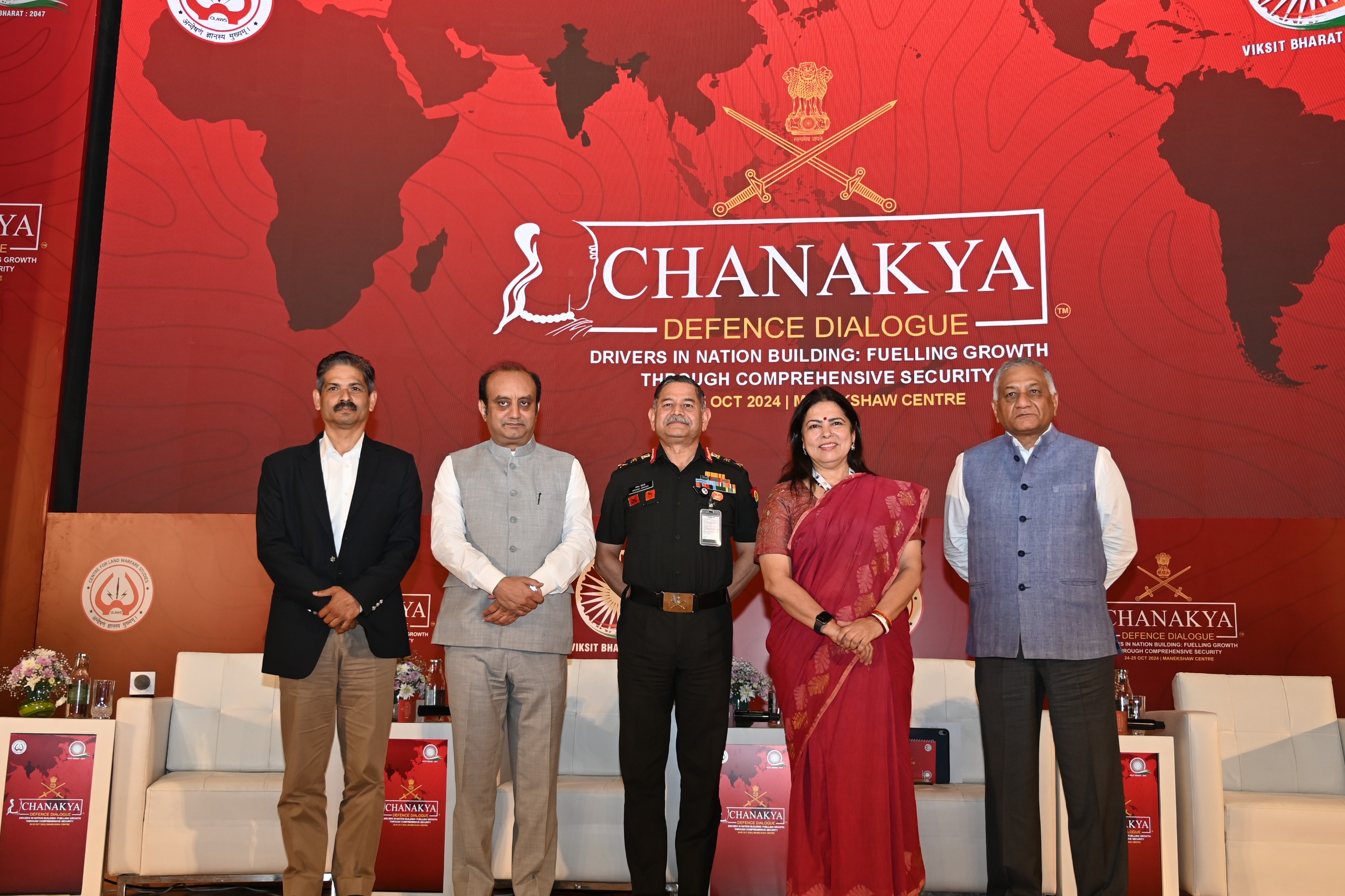
- 26 Oct 2024
In News:
- Recently, the Chanakya Defence Dialogue (CDD) 2024, second edition, was held at the Manekshaw Centre, New Delhi.
- Theme: "Drivers in Nation Building: Fueling Growth Through Comprehensive Security."
- Focus: Discussions on integrating national security into India's development trajectory and global strategy for a Viksit Bharat by 2047.
Key Objectives:
- The dialogue aimed to explore India’s strategic directions and development priorities by fostering discussions between policymakers, strategic thinkers, defence experts, and academia.
- Highlighted the link between national security and economic growth, stressing how security frameworks are vital for national progress.
Key Sessions and Discussions:
- Session 1: Social Cohesion and Inclusive Growth: Pillars of a Secure Nation:
- Focused on internal security, social unity, and inclusive development.
- Panelists discussed the role of community engagement, countering terrorism, and law enforcement reforms.
- Emphasized the need for integrating social progress and addressing challenges like separatism and terrorist narratives.
- Panelists called for evidence-based policies for equitable growth and stronger security frameworks to protect the country from internal threats.
- Session 2: Blurring Frontiers: The Convergence of Technology & Security:
- Addressed the intersection of technology and national security.
- Topics included AI, quantum computing, IoT, and blockchain for improving cyber resilience and data protection.
- Panelists emphasized the need to balance technological innovation with strong security measures, particularly in cybersecurity and critical infrastructure protection.
- Session 3: Ground-breakers: Shaping Land Warfare, Reflections for the Indian Army:
- Explored the integration of emerging technologies like AI, unmanned systems, and cyber warfare tools in enhancing military readiness.
- Focused on indigenous defense technologies under the Atmanirbhar Bharat initiative, promoting self-reliance and reducing dependency on foreign technologies.
- Emphasized multi-domain operations and the challenges of adapting to evolving security threats, especially from advanced cyber and space warfare.
Strategic Insights:
- Economic Growth & Security: The dialogue highlighted that national security and economic growth are interlinked, with a strong military infrastructure crucial for sustaining development.
- Role of Technology: Technological advancements like AI, space technology, and cybersecurity are pivotal for enhancing India's defense capabilities and strategic posture in a rapidly evolving global security landscape.
- Inclusive Security: Emphasized social cohesion and inclusive growth as key components of national security, acknowledging that a unified society contributes significantly to national resilience.
- Global Diplomacy: India’s global leadership in multilateral forums, its stance on peacekeeping, and its role in promoting sustainable development were discussed as part of the country’s soft power strategy.
National Mission for Manuscripts (NMM)
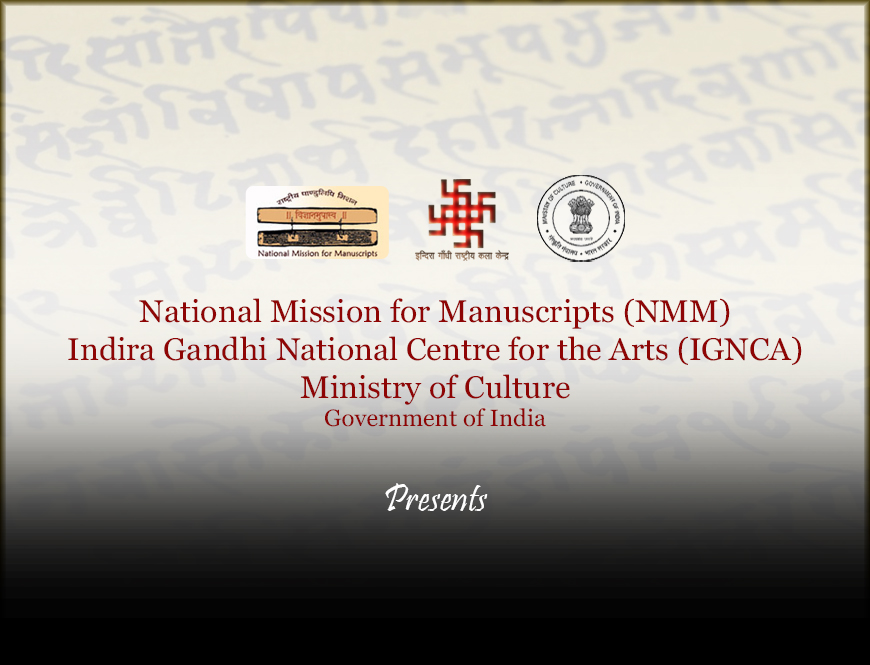
- 26 Oct 2024
In News:
- The Union Ministry of Culture plans to revive and relaunch the National Mission for Manuscripts (NMM) to enhance the preservation and accessibility of India’s ancient texts.
- The mission’s objective is to document, conserve, digitize, and disseminate India’s rich manuscript heritage, ensuring their protection and public access.
Formation of a New Autonomous Body:
- The National Mission for Manuscripts (NMM) is likely to be restructured into an autonomous body called the National Manuscripts Authority, which will be under the Ministry of Tourism and Culture.
- The new body will address the challenges and gaps in manuscript preservation and management, offering more focused and flexible governance.
Background and Achievements:
- Established in 2003, the NMM has been part of the Indira Gandhi National Centre for Arts (IGNCA).
- Key achievements:
- 52 lakh manuscripts have had metadata prepared.
- Over 3 lakh manuscripts have been digitized, though only one-third have been uploaded for public access.
- Preventive and curative conservation of over 9 crore folios of manuscripts has been undertaken over the last 21 years.
- The NMM has set up 100 Manuscripts Resource Centres and Manuscripts Conservation Centres across India.
Current Challenges and Gaps:
- Data Uploading and Access:
- Of the 130,000 digitized manuscripts, only 70,000 are accessible online due to the absence of a comprehensive access policy.
- A significant portion (around 80%) of manuscripts areprivately owned, restricting public access and usage.
- Digitization Mismatch:
- There have been concerns about discrepancies between the digitized data and the original manuscripts, which requires correction to ensure authenticity and accuracy.
- Lack of Comprehensive Access Policy:
- Limited public access to manuscripts due to policy restrictions hinders further research and public engagement with this rich heritage.
Scope and Future of NMM:
- India's Manuscript Heritage: India is believed to have around 10 million manuscripts, spread across various regions, languages, scripts, and topics.
- Digitization and Accessibility: Moving forward, the key challenge will be ensuring that a larger proportion of the manuscripts are digitized, uploaded, and made publicly available, particularly from private collections.
- The establishment of the National Manuscripts Authority is expected to streamline efforts and enhance coordination between government bodies, private institutions, and scholars.
Precision Medicine, Biobanks, and Regulatory Challenges in India

- 26 Oct 2024
In News:
Precision medicine is bringing in a new era of personalised healthcare. The field began to take concrete shape when scientists were wrapping up the Human Genome Project.
Introduction to Precision Medicine:
- Precision Medicine is a novel approach to healthcare that tailors treatments and preventive strategies based on an individual’s genetics, environment, and lifestyle, instead of using a one-size-fits-all approach.
- It leverages technologies like genomics, gene editing (CRISPR), and mRNA therapeutics to address various diseases such as cancer, chronic diseases, and genetic disorders.
- Recent breakthroughs include gene therapy for restoring vision and stem cell transplants for reversing diabetes, demonstrating the transformative potential of precision medicine.
Role of Biobanks in Precision Medicine:
- Biobanks are repositories storing biological samples (blood, DNA, tissues) along with associated health data. These samples are crucial for research and development of personalized treatments.
- Large and diverse biobanks are essential for ensuring that precision medicine benefits a wide demographic, as data from homogenous groups could limit the applicability of findings.
- Recent studies using biobank data have led to breakthroughs, such as identifying rare genetic disorders and developing organoid models for high-throughput drug screening.
Precision Medicine and Biobanks in India:
- Market Growth: India’s precision medicine market is growing at a CAGR of 16%, expected to surpass USD 5 billion by 2030, contributing 36% to the national bioeconomy.
- Policy Framework: The government’s BioE3 policy aims to promote biomanufacturing, with a focus on precision therapeutics and related technologies like gene editing and cancer immunotherapy.
- Biobank Initiatives:
- Genome India Programme: Completed sequencing of 10,000 genomes from 99 ethnic groups, aimed at identifying treatments for rare genetic diseases.
- Phenome India Project: Focused on collecting 10,000 samples for improving prediction models for cardio-metabolic diseases.
- Paediatric Rare Genetic Disorders (PRaGeD) Mission: Aiming to identify genes that could help develop targeted therapies for genetic diseases in children.
Regulatory and Ethical Challenges in Biobanking:
- India’s biobanking regulations are inconsistent, hindering the full potential of precision medicine. Unlike countries like the U.K., U.S., and Japan, which have comprehensive laws addressing issues like informed consent, data protection, and privacy, India lacks a cohesive regulatory framework.
- Informed Consent Issues: In India, participants provide samples without full knowledge of how their data will be used, who will have access to it, and for how long it will be stored. This lack of transparency undermines public trust in biobank research.
- Ethical Concerns: Without a clear regulatory framework, there is a risk of misuse of biological samples, such as non-consensual data sharing and sample mishandling.
- International Implications: The absence of robust laws allows foreign pharmaceutical companies to access Indian biobank data and samples without ensuring that the Indian population benefits from the resulting research or profits.
Global Comparison of Biobank Regulations:
- International Standards: Countries like the U.K., U.S., and Japan have established comprehensive biobank regulations, addressing:
- Informed consent for sample collection and data usage.
- Privacy protection and secure storage of genetic information.
- Withdrawal rights for participants at any stage of research.
- India’s biobank regulations lack clear provisions for data protection and participant rights, limiting the effectiveness of research and undermining public confidence in biobanks.
Microfinance Institutions (MFIs)
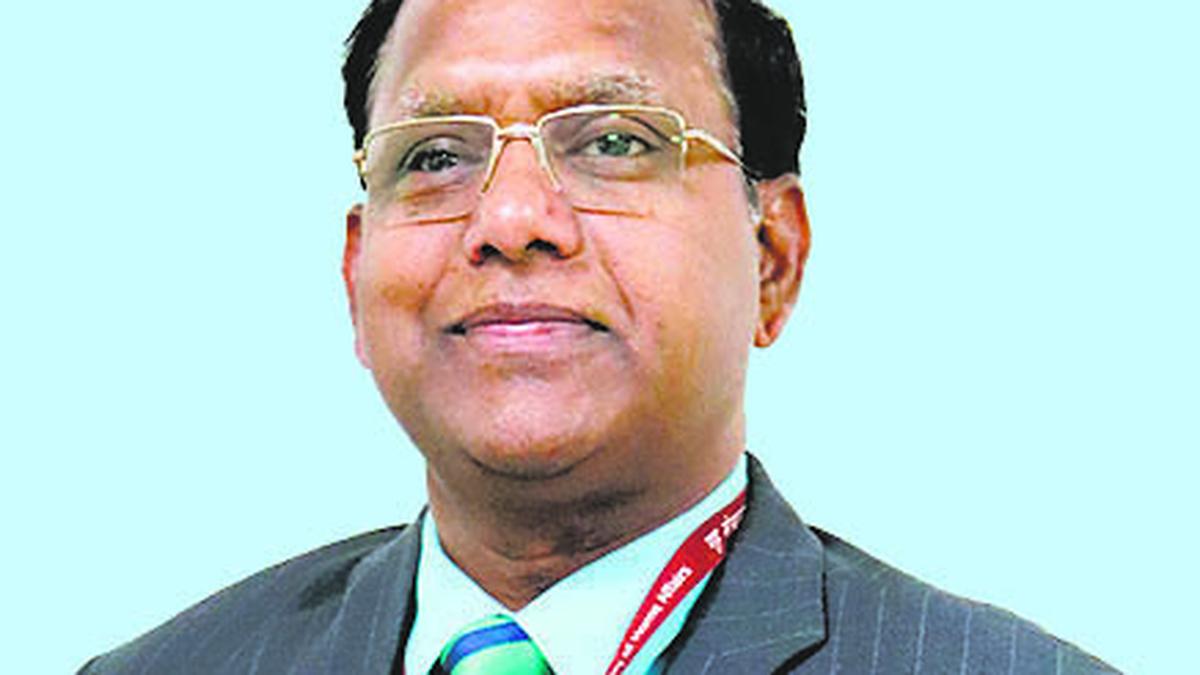
- 26 Oct 2024
In News:
Recently, the Financial Services Secretary stated that Microfinance institutions (MFIs) have played a crucial role in fostering financial inclusion but they should refrain from any reckless lending.
Microfinance Institutions (MFIs) and Financial Inclusion:
- MFIs provide small loans and financial services to low-income and marginalized groups, particularly those without access to formal banking services.
- Goal: To promote financial inclusion and empower marginalized communities, especially women, by enabling them to become self-sufficient and improve their socio-economic status.
- In India, over 168 MFIs serve around 3 crore clients across 29 states and 563 districts.
- The sector has grown significantly and is crucial for empowering Self-Help Groups (SHGs) and Joint Liability Groups (JLGs) to access credit and other financial services.
Concerns over Reckless Lending:
- The Financial Services Secretary, emphasized that MFIs should avoid reckless lending practices that could harm both borrowers and the sector.
- Poor underwriting and irresponsible lending could lead to unsustainable debt, especially for Self-Help Groups (SHGs) and Joint Liability Groups (JLGs) with limited financial literacy.
- Key Advice: Lending practices must be responsible, careful, and should aim to empower borrowers, not exploit their limited understanding.
Government Programs Supporting MFIs:
- SHG-Bank Linkage Programme: Over 77 lakh SHGs with a total loan outstanding of ?2.6 lakh crore, benefiting around 10 crore households.
- Lakhpati Didi Yojana: Aimed at empowering women, this scheme helps transform SHG members into women entrepreneurs.
Challenges Facing Microfinance Institutions:
- Regulatory Scrutiny: Many MFIs face scrutiny for high interest rates and non-compliance with borrower assessments. The RBI has urged MFIs to reassess lending practices.
- Over-Indebtedness: Many borrowers take loans from multiple MFIs, leading to unsustainable debt. As of March 2024, over 12% of borrowers had multiple loans, risking defaults.
- Low Financial Literacy: A significant challenge is low financial literacy among borrowers, which increases the risk of defaults and harms the reputation of MFIs.
RBI Guidelines on Microfinance (2022):
- Collateral-Free Loans: For households with income up to ?3 lakh, loans should be collateral-free.
- Repayment Cap: Monthly loan repayments should not exceed 50% of the borrower’s monthly income.
- Flexibility in Repayment: MFIs must offer flexible repayment options and ensure proper income assessment.
- Interest Rate Cap: The RBI has implemented guidelines to limit excessive interest rates charged by MFIs.
Government Schemes for Microfinance:
- Pradhan Mantri Mudra Yojana (PMMY): Provides financial assistance to non-corporate, non-farm small/micro enterprises.
- National Rural Livelihoods Mission (NRLM): Promotes rural livelihoods through the formation and capacity building of Self-Help Groups (SHGs).
- Deen Dayal Upadhyaya Antyodaya Yojana: Focuses on the empowerment of rural poor through skill development and income generation.
- Credit Guarantee Fund for Micro and Small Enterprises (CGTMSE): Provides guarantee cover to micro and small enterprises.
Way Forward for Microfinance Sector:
- Responsible Lending: MFIs must prioritize affordable lending practices, ensuring borrower’s repayment capacity is carefully assessed to avoid over-indebtedness.
- Enhancing Financial Literacy: MFIs should focus on financial education for borrowers, enabling them to make informed choices.
- Adherence to Regulatory Guidelines: MFIs should comply strictly with RBI regulations, including interest rate caps and borrower income assessments, to enhance sector transparency and trust.
- Malegam Committee Recommendations: Implementing suggestions like capping interest rates, tracking multiple loans, and improving transparency to prevent over-indebtedness.
- Diversifying Funding Sources: To reduce vulnerability to economic downturns, MFIs should work on diversifying their funding sources, reducing dependence on external capital.
Environmental Ship Index (ESI)

- 26 Oct 2024
In News:
- Mormugao Port Authority (MPA) has been globally recognized as an incentive provider on the Environmental Ship Index (ESI) platform, acknowledged by the International Association of Ports and Harbours (IAPH).
- Mormugao is India's first port to implement Green Ship Incentives through the ESI, contributing to global efforts to reduce maritime air emissions.
‘Harit Shrey’ Scheme:
- Launched in October 2023, the ‘Harit Shrey’ scheme provides discounts on port fees based on the Environmental Ship Index (ESI) scores of commercial vessels.
- Ships with higher ESI scores (indicating better environmental performance) are rewarded with incentives to encourage eco-friendly practices in shipping.
ESI and Global Efforts for Emission Reduction:
- The Environmental Ship Index (ESI) is a global system to evaluate and reward ships based on their environmental performance, particularly their emissions of nitrogen oxides (NOx) and sulphur oxides (SOx).
- The 2023 IMO greenhouse gas strategy aims to reduce the carbon intensity of international shipping by at least 40% by 2030.
Incentives and Benefits:
- The Harit Shrey scheme has already benefitted several vessels, promoting greenhouse gas emission reductions and contributing to sustainable maritime operations.
- The scheme aligns with global sustainability goals, particularly in reducing the carbon footprint of shipping operations.
Sustainability Recognition:
- The Mormugao Port Authority has submitted the Harit Shrey scheme for consideration in the IAPH Sustainability Awards under the World Port Sustainability Programme (WPSP), reflecting its commitment to environmental sustainability.
The Environmental Ship Index (ESI):
- ESI is a system that evaluates and rewards ships for better environmental performance than the standards set by the International Maritime Organization (IMO).
- Ships are assessed based on their emissions of NOx and SOx, with greenhouse gas reporting also included in the evaluation.
Main Features of ESI:
- Port-Centric: Developed as a port-to-port system, where ports can offer incentives based on the ESI score.
- Voluntary Participation: Shipowners participate voluntarily to demonstrate their vessels' environmental performance.
- Automated Calculation: The ESI score is automatically calculated and updated.
- Incentives: Ships with higher ESI scores may receive benefits such as reduced port fees and priority berthing.
Great Indian Bustard (GIB)
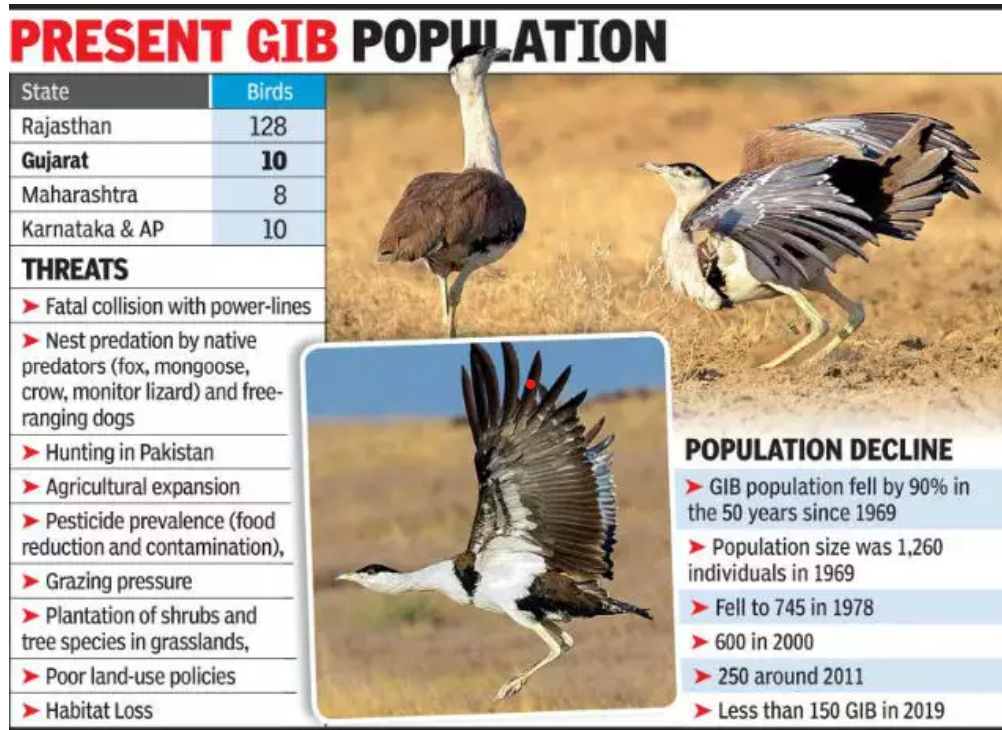
- 25 Oct 2024
A critically endangered Great Indian Bustard (GIB) chick was successfully born through artificial insemination (AI) at a breeding center in Jaisalmer, Rajasthan, marking a crucial step in efforts to save the species.
Endangered Status:
- The Great Indian Bustard is classified as critically endangered with fewer than 150 individuals left in the wild in India.
- About 90% of these birds are found in the desert areas of Rajasthan, with smaller populations in Gujarat, Maharashtra, Andhra Pradesh, and Karnataka.
Main Threats to the Species:
- Habitat Loss: The primary threat is the loss of habitat, which is often perceived as wasteland and is diverted for infrastructure projects like roads and development.
- Slow Reproductive Rate: The bustard’s low reproductive rate exacerbates its risk of extinction.
Conservation Efforts: Bustard Recovery Program
- In 2016, the Union Ministry of Environment, Forests and Climate Change launched the Bustard Recovery Program to focus on captive breeding and creating a sustainable environment for the reintroduction of GIBs into the wild.
- A dedicated GIB breeding center was set up at the Desert National Park in Jaisalmer, Rajasthan, as part of this initiative.
- Protection Status of GIB:
- IUCN: Critically Endangered
- CITES: Appendix 1
- Convention on Migratory Species (CMS): Appendix I
- Wildlife (Protection) Act, 1972: Schedule I
- It is also the state bird of Rajasthan, emphasizing its importance in the region’s biodiversity.
Introduction to Innovative Cancer Detection Technique

- 25 Oct 2024
In News:
- Scientists have developed an ultrasound-based technique for detecting cancer, aiming to replace traditional biopsies, which are invasive and painful.
- Promising Alternative: The method uses high-energy ultrasound to release biomarkers (RNA, DNA, and proteins) from cancerous tissue into the bloodstream, allowing for early cancer detection with minimal discomfort.
- Presented at Acoustical Society Conference: The technique was discussed at the joint meeting of the Acoustical Society of America and Canadian Acoustical Association in May 2024.
Traditional Cancer Detection vs. New Ultrasound Approach
- Current Gold Standard - Biopsy: Traditionally, cancer is diagnosed using biopsies, where a tissue sample is extracted using a needle from suspected cancerous areas. Although effective, biopsies are invasive, painful, and carry some risks.
- Ultrasound as a Non-Invasive Alternative: The new method involves using high-frequency ultrasound waves to break off cancerous tissue into droplets, which are then released into the bloodstream. The biomarkers in the droplets can be analyzed for cancerous mutations.
- Enhanced Sensitivity: This ultrasound-based technique increases the levels of genetic and vesicle biomarkers in blood samples by over 100 times, enabling the detection of cancers and specific mutations that are otherwise undetectable in blood.
Key Findings of the Research
- Single Cancer Cell Detection: The technique allows for the detection of a single cancer cell in blood samples. It works by passing ultrasound waves through isolated blood samples, which break apart circulating cancer cells, releasing biomarkers into the blood.
- Cost-Effective: Traditional methods for detecting circulating cancer cells are costly (e.g., the ‘CellSearch’ test costs $10,000). In contrast, this ultrasound method can detect cancer with a much lower cost, around $100 (?8,400).
- Potential for Early Diagnosis: The research shows promise for detecting cancer at an early stage, even before symptoms appear, using blood samples.
Challenges and Next Steps
- Need for Large-Scale Clinical Trials: While the technique shows potential, large cohort studies involving diverse patient groups across different geographies and ethnicities are needed to validate the approach.
- Long-Term Study for Effectiveness: Further research is required to ensure the accuracy and reliability of the technique across various cancer types and to determine the ideal biomarker thresholds for early detection.
- Regulatory Approval and Commercialization: If the clinical trials yield positive results, the method could be commercially available in approximately five years, following regulatory approval.
Understanding Cancer and Its Types
- Cancer Definition: Cancer refers to the uncontrolled growth of abnormal cells that can form tumors and spread to other parts of the body.
- Types of Cancer:
- Carcinoma: Cancer originating in epithelial cells (e.g., breast, lung, prostate cancer).
- Sarcoma: Affects connective tissues like bones and muscles.
- Leukemia: Affects blood-forming tissues, leading to abnormal white blood cell production.
- Lymphoma: Begins in immune cells, including Hodgkin and non-Hodgkin lymphoma.
- Melanoma: Cancer of pigment-producing skin cells.
- Key Differences Between Normal and Cancer Cells:
- Cancer cells grow uncontrollably and evade immune detection.
- Cancerous cells accumulate chromosomal abnormalities, unlike normal cells, which follow regulated growth patterns.
National Workshop on SATHI Portal

- 25 Oct 2024
In News:
Recently, the Department of Agriculture & Farmers' Welfare (DA&FW) organised a National Workshop on the SATHI (Seed Authentication, Traceability, and Holistic Inventory) Portal in New Delhi.
Key Highlights:
Purpose & Focus
- SATHI Portal: Focuses on Seed Authentication, Traceability, and Holistic Inventory to enhance seed certification, improve seed traceability, and streamline the seed supply chain.
- Primary Objective: Ensure availability of high-quality seeds to farmers through a transparent and efficient seed management system.
Key Features of the SATHI Portal
- Seed Certification: Aims to streamline seed certification processes across states for faster and more accurate seed certifications.
- Seed Traceability: Enhances transparency and traceability of seeds to ensure quality and authenticity.
- Inventory Management: The portal facilitates seed inventory management, helping farmers and stakeholders access reliable and transparent seed information.
- Technological Integration: Developed by the National Informatics Centre (NIC), the portal incorporates technology-driven solutions to minimize transactional time for registrations, approvals, and certifications.
Phase-II Rollout
- Focus on seed inventory management, with the objective of offering farmers reliable access to certified seed varieties.
- It aims to integrate state-specific seed processes into the national framework for greater standardization and efficiency.
Workshops & Technical Sessions
- NIC and ICAR Presentations: Covered the core components of the SATHI Portal, including:
- Seed Law Enforcement
- DNA Fingerprinting for ensuring seed authenticity.
- Seed Laboratory Processes to uphold quality control.
- Review of Phase-I: Discussions on achievements of Phase-I, focusing on improvements in seed certification processes across states.
- State Experiences: 10 state representatives shared insights on their experiences with the portal, discussing both benefits and challenges in the implementation phase.
Role of NIC & Technology
- The National Informatics Centre (NIC) is the technology partner behind the SATHI Portal, which is designed to enhance the efficiency of seed certification and inventory management.
- The portal contributes to larger digital initiatives like the Digital Agriculture Mission and Unified Farmer Service Platform (UFSP), which aim to support agricultural development through technology.
Chenchu Tribe
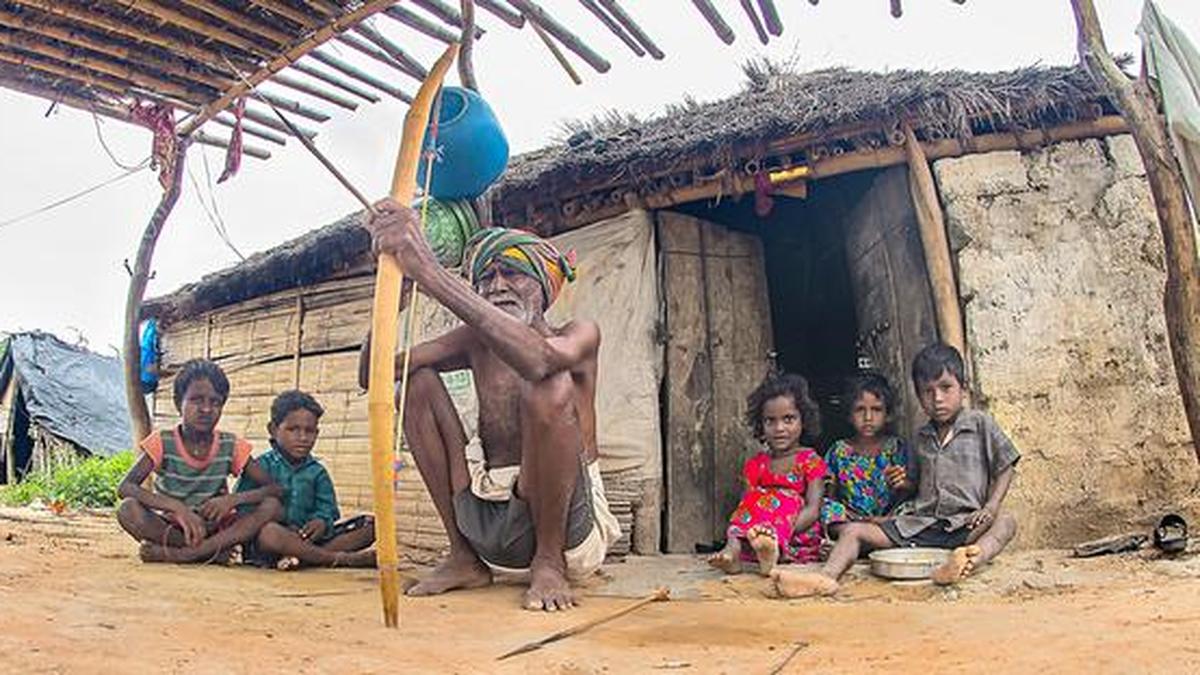
- 25 Oct 2024
In News:
The Chenchus of Penukumadugu have lived in the dense Nallamala forests for centuries, their existence intertwined with the wilderness around them. However, their inability to keep up with the relentless pace of modernisation has led to dwindling work opportunities under the MGNREGA.
Chenchu Tribe Overview
- Location: Primarily in the dense Nallamala forests, Andhra Pradesh (AP).
- Tradition: Historically hunter-gatherers, now relying on subsistence farming.
- Vulnerable Status: Classified as one of the 12 Particularly Vulnerable Tribal Groups (PVTGs) in Andhra Pradesh due to low literacy, stagnant population growth, and limited access to development.
- Livelihood: Dependent on forest resources (Non-Timber Forest Produce - NTFP) and agricultural labor.
Impact of MGNREGS (Mahatma Gandhi National Rural Employment Guarantee Scheme)
- MGNREGS Chenchu Special Project: Launched in 2009 to address specific needs of the Chenchus, such as physical strength, food insecurities, and cultural practices.
- Before Discontinuation: Provided 180 days of work per person annually, which helped Chenchus access regular income, improving food security and living conditions.
- Post-Discontinuation (2022):
- The project was integrated into a nationwide MGNREGS framework, reducing workdays to the standard 100 days per household.
- Consequences: Many Chenchus stopped engaging with MGNREGS due to bureaucratic hurdles (Aadhaar and bank linkage), reduced job days, and irregular wage payments.
- Only 1,500 out of 4,000 enrolled households currently participate in MGNREGS work.
Key Issues Post-MGNREGS Reform
- Aadhaar & Bank Account Challenges:
- Lack of literacy and digital skills makes the Aadhaar-based system intimidating.
- Many Chenchus are excluded from PDS and health benefits due to missing or unlinked Aadhaar cards.
- Absence of mobile phones and access to banks makes wage disbursement difficult.
- Irregular Payments & Trust Issues:
- The shift to bank payments has created trust issues, as many Chenchus are illiterate and cannot verify wage deposits.
- Distance from banks (up to 30 km) adds to the difficulty in accessing payments.
Forest Rights and Wildlife Conservation
- Forest Dependency: The Chenchus continue to depend on the forest for food and livelihood, but increasing restrictions due to wildlife conservation (e.g., Nagarjuna-Srisailam Tiger Reserve) have further curtailed their access to forest produce.
- Forest Rights Act (FRA): Many Chenchus have land pattas under the FRA but lack resources or support to utilize their land effectively due to the discontinuation of MGNREGS.
Government and Policy Response
- PVTG Initiatives: Various government initiatives like PM PVTG Mission, Viksit Bharat Sankalp Yatra, and Janjatiya Gaurav Divas aim to uplift PVTGs, but their impact remains limited without proper implementation of specialized support programs like the MGNREGS Chenchu Special Project.
United Nations Day 2024
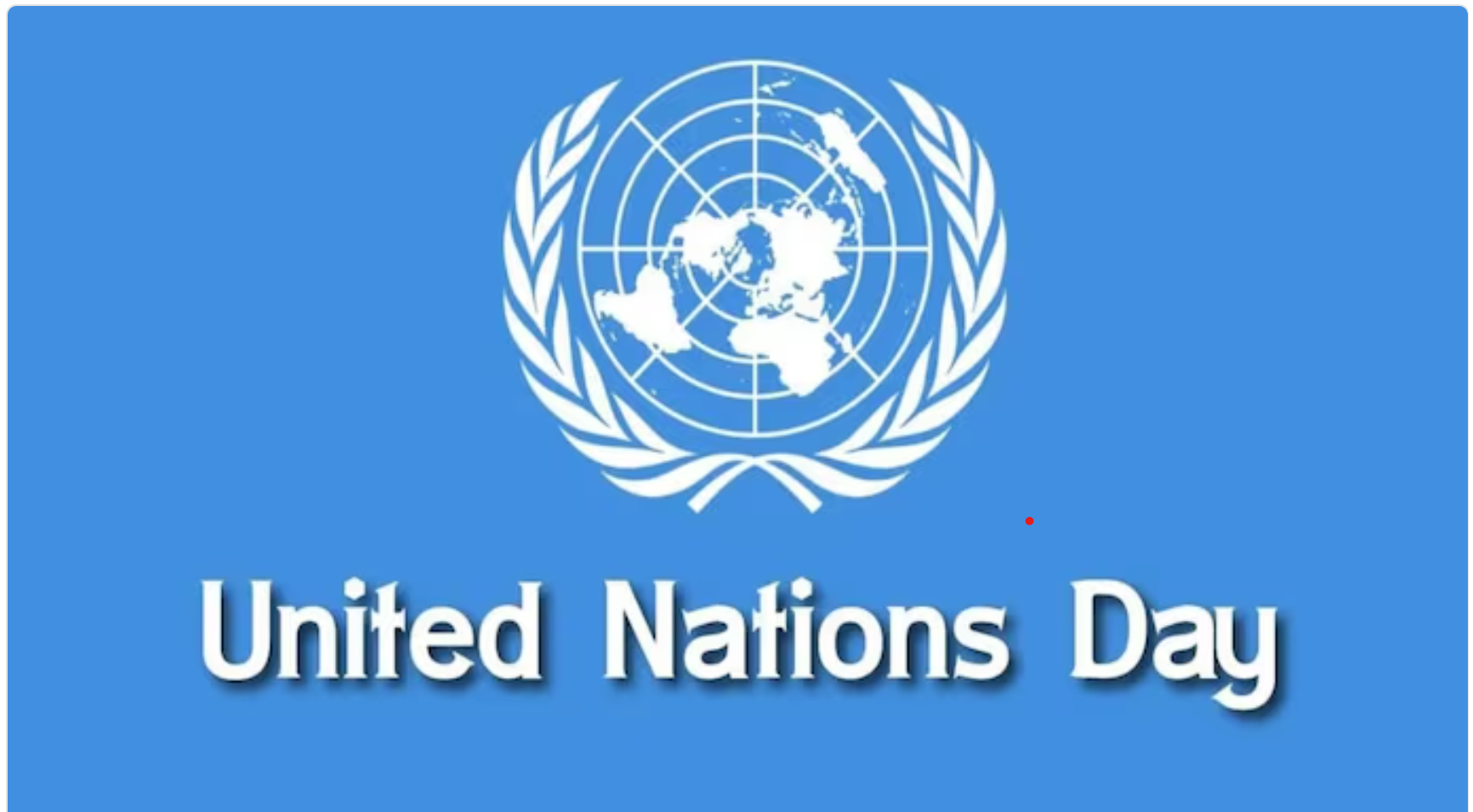
- 25 Oct 2024
In News:
United Nations Day is celebrated each year on October 24 to mark the anniversary of the UN Charter's entry into force, aiming to raise awareness about the goals and achievements of the international body.
Key Highlights:
- Purpose: Celebrates the anniversary of the UN Charter coming into effect on October 24, 1945, after World War II.
- Goal: Raise awareness about the UN’s objectives and accomplishments.
UN Charter Overview
- Signing & Implementation:
- Signed on June 26, 1945, in San Francisco.
- Came into effect on October 24, 1945.
- India ratified the UN Charter on October 30, 1945.
- Predecessor: The League of Nations, created in 1919 after WWI, aimed at promoting international cooperation and peace.
- Content:
- Foundational document of the UN, binding all member states.
- Establishes principles of international relations, including equality of nations and the prohibition of force between countries.
- Amended three times: 1963, 1965, and 1973.
UN's Core Objectives
- Peace and Security: Maintaining global peace and preventing conflicts.
- Humanitarian Aid: Providing assistance to those in need.
- Human Rights: Protecting and promoting human rights globally.
- International Law: Upholding the rule of law on the global stage.
Main Organs of the UN
- General Assembly (UNGA):
- Comprises all 193 Member States, each with one vote.
- Main policy-making body, addressing international issues covered by the UN Charter.
- Security Council (UNSC):
- Consists of 15 members (5 permanent, 10 elected for two-year terms).
- Permanent members: China, France, Russia, UK, USA.
- India has been elected to the UNSC eight times.
- Economic and Social Council (ECOSOC):
- Composed of 54 members elected by the General Assembly.
- Coordinates policy and addresses economic, social, and environmental issues.
- Trusteeship Council:
- Established to oversee trust territories transitioning to independence.
- International Court of Justice (ICJ):
- The only international court resolving disputes between UN member states.
- Handles contentious cases and provides advisory opinions.
- Secretariat:
- Led by the Secretary-General, appointed by the General Assembly based on Security Council recommendations.
- Acts as the chief administrative body of the UN.
Note: Most UN organs, including the UNGA, UNSC, ECOSOC, Trusteeship Council, and Secretariat, are based in New York, while the ICJ is located in The Hague, Netherlands.
Nobel Peace Prize 2024
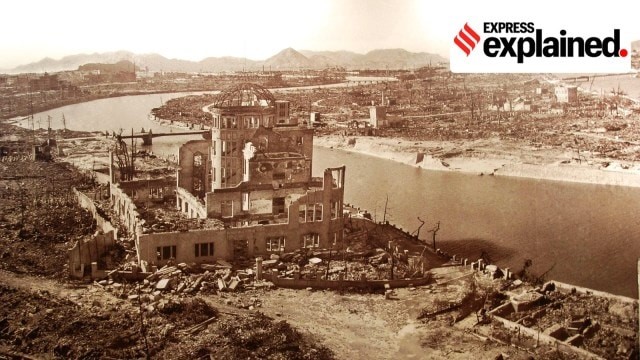
- 24 Oct 2024
In News:
The Nobel Peace Prize has been awarded to Nihon Hidankyo, an organisation of survivors of the Hiroshima-Nagasaki bombings. In doing so, the Nobel Committee has highlighted the power of their testimonies and the need for disarmament.
Key Points about Nihon Hidankyo and the Hibakusha Movement
- Nihon Hidankyo:
- Established on August 10, 1956, as the nation-wide organization for survivors of the Hiroshima and Nagasaki bombings.
- Focuses on the welfare of Hibakusha (A-bomb survivors), promoting nuclear disarmament, and advocating for compensation for victims.
- Works to share the stories and experiences of Hibakusha, both within Japan and globally.
- Hibakusha (Bomb-affected People):
- Survivors of the atomic bombings of Hiroshima and Nagasaki in 1945.
- Played a pivotal role in the global nuclear disarmament movement.
- Their testimonies have helped create the "nuclear taboo," ensuring nuclear weapons have not been used since 1945.
Role of Hibakusha in Nuclear Disarmament
- Global Impact:
- The bombings ignited a global movement for nuclear disarmament.
- Hibakusha's advocacy has highlighted the human cost of nuclear weapons, shaping international policy and promoting the nuclear taboo.
- Nihon Hidankyo’s Advocacy:
- The organization has been instrumental in documenting the effects of nuclear weapons and advocating for their abolition.
- Testimonies from Hibakusha have been key in raising awareness about the catastrophic humanitarian consequences of nuclear warfare.
Nobel Committee's Recognition and Current Nuclear Challenges
- Recognition of Hibakusha's Work:
- The Nobel Committee awarded the Peace Prize to Nihon Hidankyo for its role in promoting nuclear disarmament and for contributing to the nuclear taboo.
- The nuclear taboo is under increasing pressure as new countries seek nuclear weapons and existing powers modernize their arsenals.
- Current Nuclear Landscape:
- The US and Russia continue to maintain large nuclear stockpiles, with the US planning to spend over $1 trillion on upgrading its nuclear capabilities by the 2040s.
- New Threats: Geopolitical tensions, including regional conflicts, raise concerns about the resurgence of nuclear arms races.
Previous Nobel Peace Prizes for Disarmament
- Past Laureates:
- 1974: Former Japanese Prime Minister Eisaku Sato awarded for Japan's commitment to non-nuclear weapons policy.
- 2017: International Campaign to Abolish Nuclear Weapons (ICAN) awarded for its efforts to draw attention to the humanitarian consequences of nuclear weapons and push for a nuclear ban treaty.
- Link with Alfred Nobel’s Vision:
- Alfred Nobel, the founder of the Peace Prize, made his fortune with the invention of dynamite and sought to use his wealth to promote peace, especially through disarmament.
IMF's World Economic Outlook (WEO)
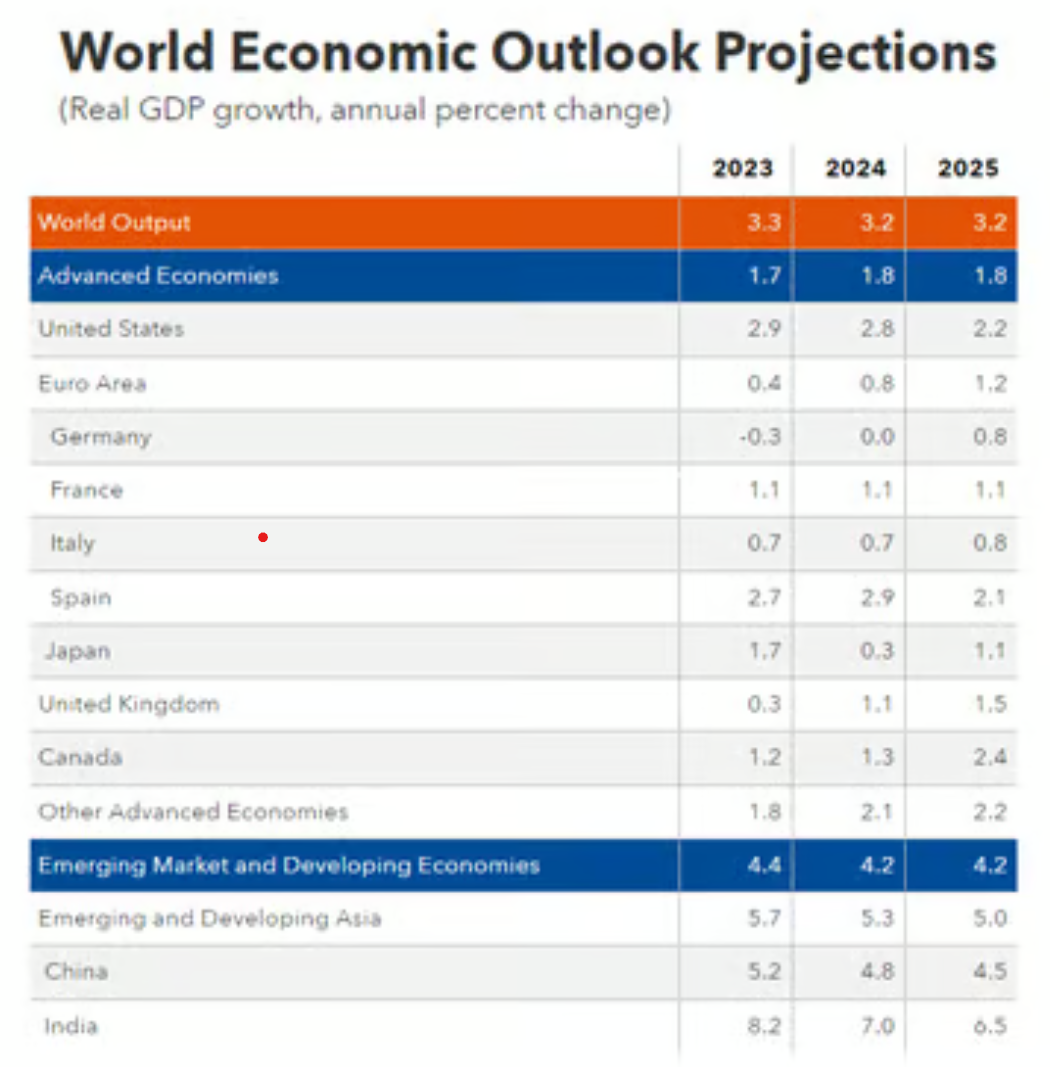
- 24 Oct 2024
In News:
- The International Monetary Fund (IMF) has maintained India’s GDP growth forecast at 7% for FY2024, marking a moderation from 8.2% in 2023.
- FY2025 Projection: Growth is expected to slow further to 6.5% in FY2025.
- India’s growth is expected to be stronger than most other large economies, yet the downward revision reflects challenges in the global economy and moderation in domestic economic momentum.
Global Economic Growth Projections:
- Global Growth (2024-2025): Global growth is projected at 3.2% in 2024 and 2025, which is stable but modest. This growth rate is largely unchanged from previous IMF forecasts.
- Long-Term Outlook: The IMF's long-term projection for global growth is 3.1%, which is considered subpar compared to pre-pandemic growth rates, signaling a potential era of low growth.
Key Risks and Uncertainties:
- The IMF highlights several downside risks to global growth, including:
-
- Monetary tightening: Central banks' high-interest rate policies to combat inflation could have long-term negative effects on economic growth and financial stability.
- Geopolitical Tensions: Ongoing conflicts, such as the Russia-Ukraine war, could disrupt global supply chains and trade, exacerbating inflation and slowing growth.
- China’s Economic Slowdown: China, the world’s second-largest economy, is facing a slower growth trajectory, especially in its real estate sector, which is dragging down its overall growth.
- Structural Challenges: The aging population and weak productivity are long-term growth inhibitors in many advanced economies, adding uncertainty to future growth prospects.
-
- Inflation and Monetary Policy:
- The IMF's inflation forecast shows global inflation cooling:
- 2023: Global inflation is expected to reach 6.7%.
- 2024: It is forecast to fall to 5.8%, with advanced economies expected to return to inflation targets sooner than emerging markets.
- 2025: A further decline to 4.3%.
- The primary driver of disinflation is not interest rate hikes but the unwinding of pandemic-related shocks, supply chain improvements, and the gradual return of labor supply.
- Monetary Policy: Central banks are likely to ease policies once inflation nears target levels, but risks of further commodity price spikes or geopolitical tensions could delay this.
- The IMF's inflation forecast shows global inflation cooling:
US and Europe Growth:
- Emerging Markets and Developing Economies:
- Growth Outlook: The IMF forecasts growth in emerging markets and developing economies at 4.2% for 2024 and 2025, with a slight moderation to 3.9% by 2026.
- Emerging Asia: Growth in emerging Asia (led by India and China) is expected to slow, from 5.7% in 2023 to 5% in 2025.
- India’s Relative Strength: India’s growth continues to outperform many emerging economies, though the slowdown from 8.2% in 2023 to 7% in 2024 reflects global economic headwinds.
- Income Inequality Risks:
- The IMF warns that low growth over an extended period (4+ years) could exacerbate income inequality within countries, as sluggish growth affects job creation and wage growth.
- Countries with slow economic recovery are likely to see a widening gap between rich and poor, undermining social cohesion and stability.
PM Young Achievers’ Scholarship Award Scheme for Vibrant India (PM YASASVI)
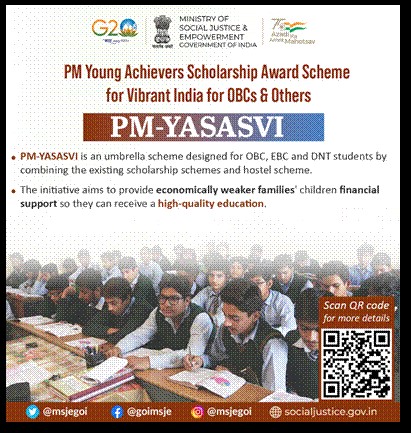
- 24 Oct 2024
In News:
With a vision of "Sabka Sath, Sabka Vikas", the Ministry of Social Justice and Empowerment has implemented the PM Young Achievers Scholarship Award Scheme for Vibrant India (PM-YASASVI).
- Objective of PM-YASASVI:
- The scheme aims to provide financial support and educational opportunities to students from Other Backward Classes (OBC), Economically Backward Classes (EBC), and Denotified Tribes (DNT).
- The goal is to help these students overcome financial barriers and pursue quality education, fostering a more inclusive and equitable society.
- Consolidation of Earlier Schemes:
- PM-YASASVI integrates multiple previous scholarship schemes:
- Dr. Ambedkar Post-Matric Scholarship for EBCs.
- Dr. Ambedkar Pre-Matric and Post-Matric Scholarship for DNTs.
- This consolidation aims to streamline the process and increase the impact on vulnerable groups.
- Key Components of the Scheme:
- Pre-Matric Scholarship: For students in Class 9-10 with annual family income below ?2.5 lakh. Provides ?4,000 annually.
- Post-Matric Scholarship: For students pursuing higher education, with academic allowances ranging from ?5,000 to ?20,000 based on course type.
- Top Class School Education: For meritorious students, offering ?1.25 lakh annually for students from OBC, EBC, and DNT categories in Classes 9-12.
- Top Class College Education: Covers tuition, living expenses, and educational materials for students in top institutions.
- Construction of Hostels for OBC Boys and Girls: Provides hostel facilities to socially and educationally backward students near government institutions.
- Scope and Financial Allocation (2023-24):
- Pre-Matric Scholarship: ?32.44 crore allocated to states and UTs for the year 2023-24, benefiting 19.86 lakh students.
- Post-Matric Scholarship: ?387.27 crore allocated for the year, benefiting 27.97 lakh students.
- Top Class School Education: ?6.55 crore for 2,602 students.
- Top Class College Education: ?111.18 crore for 4,762 students.
- Hostel Construction: ?14.30 crore allocated for the construction of hostels, accommodating 1,146 students.
- Key Benefits:
- Financial Assistance: Reduces the financial burden on students from marginalized communities, enabling them to continue their education without financial stress.
- Inclusive Education: Supports students from disadvantaged backgrounds, ensuring that they can access quality education from school through to higher education.
- Promotion of Merit: Focuses on meritorious students, ensuring that academic excellence is supported at all levels, from school to top-class institutions.
- Selection Process:
- The YASASVI Entrance Test (YET) is conducted by the National Testing Agency (NTA) for candidate selection under the scheme.
- Eligible students must appear for this test, and the results determine scholarship awards.
- Eligibility Criteria:
- The scheme is open to OBC, EBC, and DNT students with a family income not exceeding ?2.5 lakh annually.
- Additional specific eligibility criteria may apply for different scholarships under the scheme.
- Application Process:
- Interested students can apply for scholarships via the National Scholarship Portal (scholarships.gov.in), which is the official platform for application submission.
E. coli Outbreak Linked to McDonald's Burgers
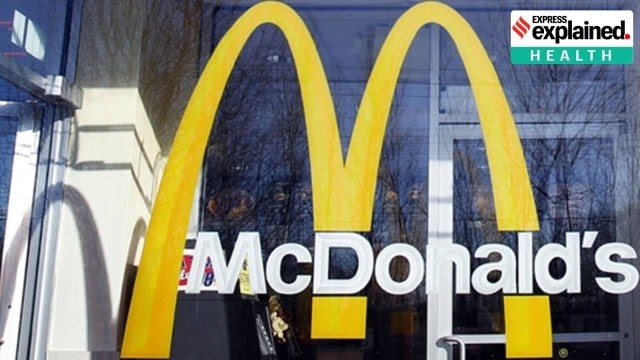
- 24 Oct 2024
In News:
- An E. coli outbreak has been linked to McDonald's burgers in the United States. The infection has affected at least 10 states.
E. coli in India:
- Prevalence: E. coli infections are common in India, especially during the summer and rainy seasons, when there is an increase in gastrointestinal infections.
- Transmission: E. coli spreads mainly through contaminated food and water.
- National statistics: Over 500 outbreaks of diarrhoeal diseases were reported in India in 2023. E. coli is one of the most common pathogens causing gastrointestinal infections in India.
- ICMR data: According to the latest report from the Indian Council of Medical Research (ICMR), E. coli was found in 23.19% of patient samples from tertiary care hospitals across India.
- FSSAI's Role: The Food Safety and Standards Authority of India (FSSAI) is establishing a network of 34 microbiology labs to test food for pathogens like E. coli, salmonella, and listeria.
Symptoms of E. coli Infection:
- Common symptoms include:
- High fever (over 102°F)
- Persistent diarrhoea, sometimes bloody
- Vomiting
- Dehydration due to fluid loss
- Severe cases may lead to acute kidney injury.
Treatment of E. coli Infections:
- E. coli is treated with antibiotics, but medical consultation is necessary before taking any medication.
- Antimicrobial resistance is a growing concern, as E. coli's susceptibility to antibiotics, including carbapenem, has declined from 81.4% in 2017 to 62.7% in 2023.
When to Seek Medical Attention:
- Consult a doctor if:
- Diarrhoea lasts more than a couple of days.
- Frequent visits to the toilet (every half hour to an hour).
- Bloody diarrhoea.
- Vomiting frequently or inability to retain fluids.
Food Safety Measures:
- The FSSAI is working to improve food safety by implementing better testing protocols for microbial contamination in food products across India.
Cyberfraud Losses and Economic Impact

- 24 Oct 2024
In News:
- ?1.2 lakh crore is the projected financial loss due to cyber frauds in India over the next year (2024), according to the Indian Cyber Crime Coordination Centre (I4C) under the Union Home Ministry.
- This could amount to 0.7% of India’s GDP.
- Mule Accounts:
- Mule accounts are a significant contributor to cyber frauds. These accounts are used to facilitate money laundering and illegal transactions.
- On average, around 4,000 mule accounts are identified daily by I4C.
- Mule accounts typically facilitate the transfer of funds out of India, often through cryptocurrency transactions.
- Sources of Cyber Scams:
- A majority of frauds are linked to Chinese entities or China-based operations, with about half of the cybercrime complaints originating from China.
- Other major hubs for cyber frauds include Cambodia, Myanmar, and Laos, which house call-centre-like scam compounds.
- Azerbaijan has also been identified as a new hotspot for such scams.
- International Dimension:
- Fraudulent withdrawals have been reported from ATMs in Dubai, Hong Kong, Bangkok, and Russia using mule accounts.
- The international nature of these scams often involves routing stolen funds through various countries, using methods like cryptocurrency exchanges.
- Cybercrime and Terror Financing:
- Cyber scams have potential ramifications beyond financial losses; they can be used for terror financing and money laundering.
- Cryptocurrency is a common medium for laundering money, with an example cited of ?5.5 crore laundered through 350 transactions in a short span.
- ATM Hotspots and Fraudulent Withdrawals:
- 18 ATM hotspots have been identified across India where fraudulent withdrawals occur.
- Fraudsters exploit these locations to withdraw money, often using mule bank accounts and cross-border ATM networks.
- Government Response:
- The Ministry of Home Affairs (MHA) is working to combat these frauds by convening meetings with the Union Finance Ministry and the Reserve Bank of India (RBI).
- The objective is to curb the operation of mule accounts and strengthen the banking system to prevent such frauds.
- Banks are being urged to flag unusually high-value transactions or accounts with low balances that are engaging in suspicious activity.
- Fraudulent Calls and Scam Compounds:
- Indian fraudsters, in collaboration with international scam rings, use Indian mobile phone numbers to deceive citizens.
- Countries like Cambodia, Myanmar, Laos, and Azerbaijan have been identified as hubs for investment scams involving fraudulent calls.
- Helpline and Cyber Fraud Reporting System:
- The Citizen Financial Cyber Fraud Reporting and Management System (part of I4C) and the 1930 helpline provide mechanisms to report financial frauds.
- ?11,269 crore in financial frauds was reported during the first half of 2024 via these channels.
- The system also involves cooperation with over 200 financial intermediaries, including banks and wallets.
Tenkana

- 23 Oct 2024
In News:
- A team of arachnologists has discovered a new genus of jumping spiders, Tenkana, found across southern India and northern Sri Lanka.
- The discovery includes two previously known species, Tenkanamanu and Tenkanaarkavathi, and introduces a new species, Tenkanajayamangali, from Karnataka.
Name and Origin:
- The name Tenkana comes from the Kannada word for "south," reflecting the geographical region where all known species of this genus are found—southern India and northern Sri Lanka.
- The genus belongs to the Plexippina subtribe of jumping spiders, which is distinct from related genera like Hyllus and Telamonia.
Key Findings:
- Tenkanajayamangali was first discovered in Devarayanadurga reserve forest, Tumakuru district, Karnataka, at the origin of the Jayamangali river.
- The new species was identified through genetic analysis and physical examination, showing it did not match any known species.
Physical Characteristics:
- The male and female Tenkanajayamangali exhibit distinct physical differences.
- The male has pale hairs covering most of its carapace, while the female is grey with a pattern.
- The ocular area of T. jayamangali is uniformly covered with white hairs, in contrast to T. arkavathi and T. manu, which have distinctive markings.
Habitat and Distribution:
- Tenkana spiders are typically ground-dwelling and prefer dry, open habitats like short grasses, leaf litter, and rocky outcrops.
- These spiders have been observed in Tamil Nadu, Puducherry, Karnataka, Telangana, Andhra Pradesh, and some areas in Sri Lanka.
- The male and female spiders of T. jayamangali were discovered in different regions, 2 km apart, at the hilltop and foothills of the same forest.
Ecological and Behavioral Insights:
- The Tenkana genus is considered endemic to India, with species observed in diverse regions such as Bengaluru, Yercaud (Tamil Nadu), and Bannerghatta (Karnataka).
- These spiders are found in complex microhabitats, like shaded short grasses with dry leaf litter or rocky outcrops in relatively dry habitats.
- The movement of Tenkana spiders resembles that of Stenaelurillus, another ground-dwelling spider species.
Amazon Future Engineer Program (Phase 3)
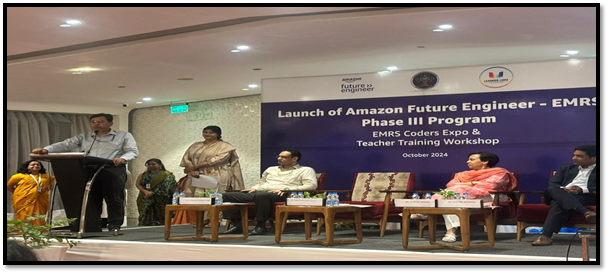
- 23 Oct 2024
In News:
- The National Education Society for Tribal Students (NESTS) launched the third phase of the Amazon Future Engineer Program in 50 Eklavya Model Residential Schools (EMRS).
- Schools involved are spread across Andhra Pradesh, Gujarat, Karnataka, Madhya Pradesh, Odisha, Telangana, and Tripura.
Program Focus Areas:
- Emerging Technologies: The third phase introduces tribal students to key areas like:
- Blockchain technology
- Artificial Intelligence (AI)
- Coding and block programming
- The program is designed to equip students with skills in computer science fundamentals.
Teacher Training:
- A four-day in-person training workshop for teachers was conducted to empower them with the skills necessary to teach emerging technologies effectively.
- Teachers also participated in the EMRS Coders Expo, showcasing top student coding projects from the previous academic year.
Target Audience:
- Students: The program targets students from grades 6 to 9. Class 10 students will participate in project-based virtual sessions aligned with the CBSE AI Skills Curriculum.
- The goal is to enhance students' understanding of computer science and technology and prepare them for STEM (Science, Technology, Engineering, Mathematics) careers.
Program Expansion:
- Future Plans: The program will be rolled out in the next phase to cover a total of 410 EMRSs across India.
- Impact: Over 7,000 students in grades 6 to 8 have already benefited from the program’s introduction to computer science and block programming.
Key Goals of the Program:
- Empower Tribal Students: Provide tribal students with modern technological skills to prepare them for future STEM careers.
- Capacity Building: Equip both teachers and students with the knowledge and skills to engage with emerging technologies.
- Fostering Technological Literacy: The initiative aims to foster technological literacy and modernize education in tribal areas.
Recognition:
- During the event, Top 3 Student Coding Projects were felicitated for their creativity and innovation.
- The Top 3 IT Teachers were also recognized for their dedication in guiding students through the program.
Partnership with Amazon:
- The program is a collaboration between NESTS and Amazon, showcasing a joint effort to improve educational access and technological skill development among tribal students.
India's Mission Mausam and the Cloud Chamber

- 23 Oct 2024
In News:
Mission Mausamaims to not just improve weather forecasting in the country but also ‘manage’ certain weather events, and on demand, enhance or suppress rainfall, hail, fog and, later, lightning strikes.
- Focus Areas:
- Enhancing or suppressing rainfall, hail, fog, and later, lightning strikes on demand.
- Strengthening cloud physics research to better understand and modify weather conditions.
- Establishment of Cloud Chamber:
- Location: The cloud chamber is being built at the Indian Institute of Tropical Meteorology (IITM) in Pune.
- Purpose: To study cloud physics in detail and develop methods for weather modification.
- Key Feature: It will be a convective cloud chamber, capable of simulating conditions specific to Indian monsoon clouds.
What is a Cloud Chamber?
- A scientific apparatus that mimics the conditions required for cloud formation.
- Function: Water vapour, aerosols, and other particles are injected into the chamber, and under controlled temperature and humidity conditions, clouds can be formed.
- Global Context: While many countries have cloud chambers, India is building one with convection properties, which are essential for studying monsoon clouds. Only a few such chambers exist globally.
Why India Needs a Convective Cloud Chamber?
- Cloud Physics: The chamber will allow scientists to study various phenomena such as:
- Cloud behaviour under normal and extreme conditions.
- Formation of rain droplets and ice particles.
- Influence of moisture from cyclones or low-pressure systems.
- Interactions between different cloud layers.
- Objective: To gain insights into cloud formation specific to the Indian monsoon and develop strategies for weather modification.
Applications for Weather Modification:
- The cloud chamber will help scientists simulate and understand how to influence weather events like rain and fog, particularly in monsoon systems.
- It will allow testing of new ideas and theories under controlled conditions, adjusting temperature, humidity, and convection parameters to suit Indian weather conditions.
India’s Experience with Cloud Seeding:
- Cloud Seeding: A technique tested in India to enhance rainfall by introducing particles (seeds) into clouds.
- CAIPEEX Program: India conducted the Cloud Aerosol Interaction and Precipitation Enhancement Experiment (CAIPEEX) over a decade to study cloud seeding's effectiveness.
- Findings: Cloud seeding increased rainfall by up to 46% in some regions, showing its potential under specific conditions.
- Limitations: Cloud seeding is not a one-size-fits-all solution and is effective only under certain conditions.
Significance for India’s Weather Forecasting:
- Improved Weather Modification: The cloud chamber and insights from it could lead to better management of weather events, especially in regions affected by monsoon rains, cyclones, and droughts.
- Tailored Strategies: India will be able to implement targeted weather interventions, especially in agricultural regions, to reduce the negative impacts of extreme weather.
???????Global and Regional Relevance:
- Cloud Chamber: The Pune facility will be one of the few globally with the specific focus on convective properties needed to study Indian monsoon systems.
- Role in Climate Science: India’s investment in cloud physics research positions it at the forefront of developing technologies to manage climate variability and extreme weather events.
India-Pakistan Kartarpur Corridor Agreement Renewal
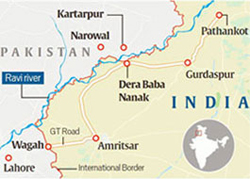
- 23 Oct 2024
In News:
- India and Pakistan have extended the Sri Kartarpur Sahib Corridor Agreement for another five years (until 2029).
- Purpose: The extension ensures uninterrupted operation of the corridor, allowing Indian pilgrims to visit Gurdwara Darbar Sahib Kartarpur in Pakistan.
- Significance: The extension reflects continued cooperation between India and Pakistan, with potential implications for improving bilateral relations.
Background of Kartarpur Corridor:
- Inception: The agreement was first signed on October 24, 2019, to allow visa-free access for Indian pilgrims to Gurdwara Darbar Sahib Kartarpur near Narowal in Pakistan.
- Pilgrimage Details:
- Eligibility: Indian nationals and Overseas Citizens of India (OCI) cardholders can visit the gurdwara on a daily basis.
- Return on Same Day: Pilgrims must return on the same day.
- No Religious Restrictions: Pilgrims of any faith can use the corridor.
- Capacity: Up to 5,000 pilgrims per day can visit the gurdwara.
- Historical Importance: The corridor facilitates the Sikh community's access to a key religious site, located just 4.7 km from the India-Pakistan border.
- Service Charge Dispute:
- Pakistan's Service Fee: Pakistan continues to charge a $20 service fee (approx. ?1,680) per pilgrim, which India has consistently urged Pakistan to waive.
- Pakistan’s Justification: Pakistan maintains the fee to cover the $17 million spent on refurbishing the gurdwara and developing infrastructure for the corridor.
- Geopolitical Context and Timing:
- Recent Developments: The agreement renewal follows External Affairs Minister S. Jaishankar’s visit to Pakistan to attend the Shanghai Cooperation Organization (SCO) Council of Heads of Government meeting.
- Improved Bilateral Relations: Jaishankar’s visit marked the first visit by an Indian foreign minister to Pakistan in nearly nine years, signaling potential thaw in relations, despite the lack of formal bilateral dialogue.
- Strategic and Religious Importance:
- Religious Diplomacy: The Kartarpur Corridor is viewed as a confidence-building measure and a symbol of religious diplomacy, particularly for the Sikh community.
- Historical Legacy: The corridor links Gurdwara Darbar Sahib Kartarpur in Pakistan to Gurdwara Dera Baba Nanak in India, facilitating access to a site of immense religious significance for Sikhs.
- Implications for India-Pakistan Relations:
- No Formal Bilateral Talks: Despite the successful renewal of the agreement, formal talks between India and Pakistan remain suspended, particularly after India’s revocation of Article 370 in Jammu and Kashmir in 2019, which led to a diplomatic freeze.
- Pakistan's Diplomatic Stance: Pakistan had recalled its high commissioner from India in August 2019, and tensions have remained high since then.
- Potential for Future Engagement:
- Diplomatic Channels Opened: The renewal of the Kartarpur agreement and Jaishankar’s visit suggest that diplomatic channels are still open, and there may be scope for further engagement if both sides take steps to address outstanding issues.
IMF retains India’s growth projection at 7% for FY25
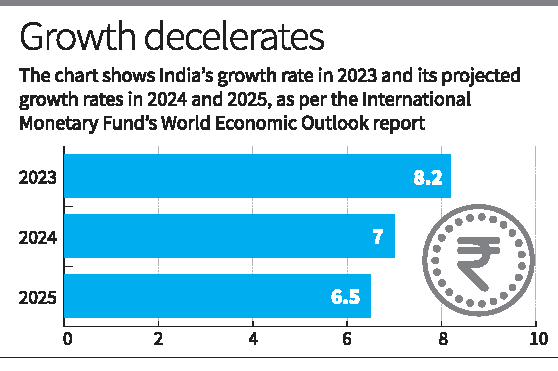
- 23 Oct 2024
In News:
The International Monetary Fund (IMF) has revised India's GDP growth forecast for the fiscal year 2024-25 to 7%, up by 20 basis points from its previous estimate of 6.8%.
- India’s Growth Projections:
- Current Fiscal Year (FY2024-25): India’s GDP growth is projected at 7%, unchanged from June 2024 estimates.
- Next Fiscal Year (FY2025-26): Growth expected at 6.5%.
- Growth Decline from FY2023 (8.2%): The slowdown is attributed to the exhaustion of pent-up demand post-pandemic and the economy returning to its potential.
- Global Economic Growth:
- World Output: Projected global growth at 3.2% in both 2024 and 2025.
- Advanced Economies: U.S. GDP growth revised upward to 2.8% in 2024 and 2.2% in 2025.
- Emerging Markets & Developing Economies: Growth revised upwards, largely due to stronger economic activity in Asia, with China and India being key contributors.
- Global Inflation and Monetary Policy:
- Inflation Decline: Global inflation has decreased from its peak of 9.4% in Q3 2022 to 3.5% projected by end-2025.
- Inflation Outlook: Despite reductions in inflation, price pressures persist in some regions.
- Monetary Policy Tightening: IMF acknowledges challenges due to tight monetary conditions in several economies and their potential impacts on labor markets.
- Global Risks and Challenges:
- Geopolitical Tensions: Ongoing Russia-Ukraine war and escalating conflicts in West Asia (e.g., Lebanon) have increased geopolitical risks, potentially affecting commodity markets.
- Protectionism: Growing protectionist policies worldwide are a risk to global trade and economic stability.
- Sovereign Debt Stress: Debt burdens in several countries could become a source of instability.
- Weak Chinese Economy: Slower-than-expected recovery in China remains a significant concern for global economic growth.
- Monetary Policy Risks: Prolonged tight monetary policies in some countries could impact labor markets and economic recovery.
- IMF’s Policy Recommendations for Medium-Term Growth:
- Monetary Policy Neutrality: Countries should adopt a neutral monetary policy stance to balance growth and inflation control.
- Fiscal Policy Adjustment: Build fiscal buffers after years of loose fiscal policy to ensure stability.
- Structural Reforms: Implement structural reforms to boost productivity and cope with challenges like aging populations, the climate transition, and the need for youth employment.
- India’s Economic Outlook - Key Drivers:
- Rural Consumption Growth: The upward revision of India's FY2024-25 GDP forecast to 7% is driven by improved consumption, especially in rural areas.
- Upward Revisions for 2023: The increased growth forecast also reflects positive carryover effects from India's 8.2% growth in 2023.
- Emerging Asia's Growth: The growth outlook for emerging Asia is supported by India and China, though long-term growth prospects for China are weaker (projected to slow to 3.3% by 2029).
- Global Economic Outlook:
- World Growth Projections: Global growth is expected to remain at 3.2% in 2024 and 3.3% in 2025.
- Diverging Growth Rates: Growth across economies is converging as output gaps close, particularly in advanced economies (e.g., U.S. labor market cooling, euro area recovery).
Z-Morh Tunnel Project in Kashmir

- 22 Oct 2024
In News:
Seven people were killed in Jammu and Kashmir when suspected militants targeted the workers of infrastructure company APCO Infratech, which is constructing the Z-Morh tunnel on the Srinagar-Sonamarg highway. This is the first militant attack on a key infrastructure project in Jammu and Kashmir. In the past, militants have not targeted such infrastructure projects in the region.
What is the Z-Morh Tunnel?
- Length: 6.4 kilometers
- Connection: Links Sonamarg (a popular tourist destination) with Kangan town in central Kashmir’s Ganderbal district.
- Construction Site: Located near Gagangir village, ahead of Sonamarg.
- Naming: The tunnel gets its name from the Z-shaped road near the construction site.
Importance of the Z-Morh Tunnel
- All-Weather Connectivity: The tunnel is crucial for year-round access to Sonamarg, particularly in the winter when the road is often blocked by snow avalanches.
- Location: Situated at 8,500 feet above sea level, the tunnel provides a safe, all-weather route for tourists and locals, especially during winter months when access to Sonamarg is typically limited.
Strategic Importance
- Part of Zojila Tunnel Project:
- The Z-Morh tunnel is integral to the larger Zojila tunnel project, which aims to provide all-weather connectivity from Srinagar to Ladakh.
- The Zojila Tunnel, under construction at an altitude of around 12,000 feet, will connect Sonamarg (Kashmir) to Drass (Ladakh) and is expected to be completed by December 2026.
- Military and Strategic Significance:
- The Z-Morh tunnel is crucial for rapid military mobilization between Srinagar, Kargil, Leh, and Drass regions.
- It ensures quick access for military personnel to the Ladakh border, particularly in areas of heightened security like Siachen Glacier and the Turtuk sub-sector (on the Pakistan border).
- The tunnel will reduce dependence on air transport for troop and supply movements to forward areas, leading to cost savings and extended aircraft lifespan.
The case for a nature restoration law in India
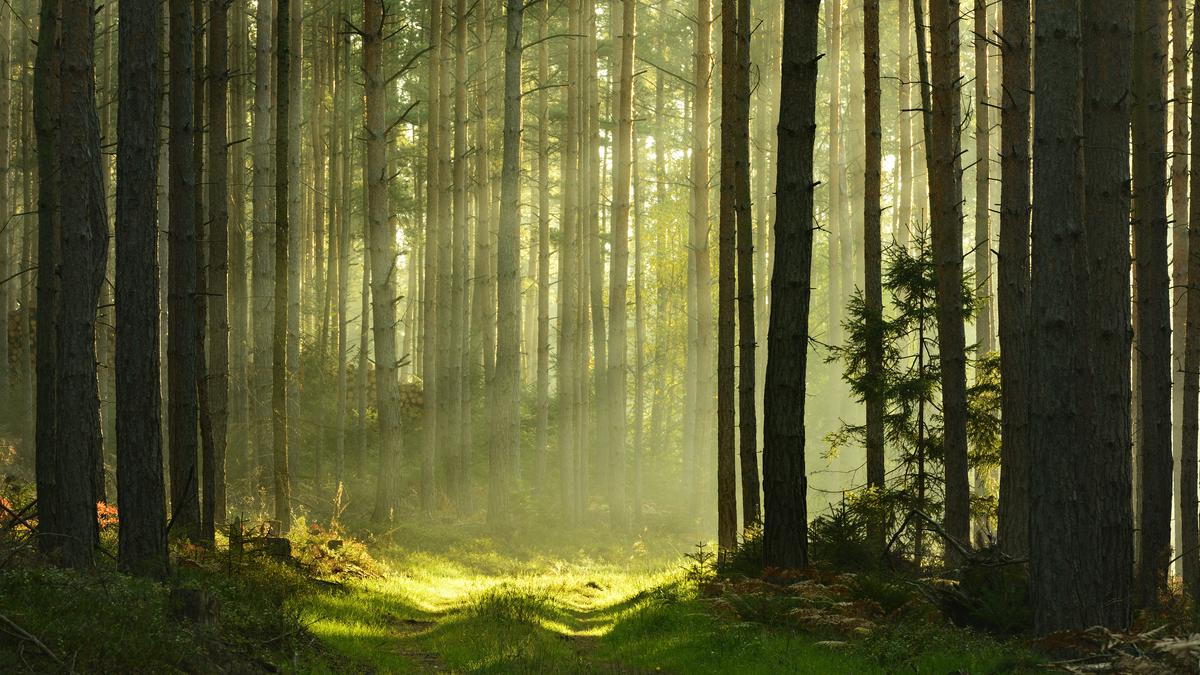
- 22 Oct 2024
In News:
The Nature Restoration Law (NRL), which was enacted by the European Union (EU), is an inspiring model from which India can draw points to tackle its growing environmental crises.
Background of the NRL in the EU
- The Nature Restoration Law (NRL) was enacted by the European Union (EU) to restore ecosystems and combat biodiversity loss.
- Adopted on June 17, 2024, by the EU’s Environmental Council.
- Key objectives:
- Restore 20% of EU’s land and sea areas by 2030.
- Achieve full restoration of all ecosystems by 2050.
- Part of the EU’s Biodiversity Strategy for 2030 and European Green Deal.
- Target Areas:
- Forests, agricultural lands, rivers, urban spaces.
- Restoration measures include:
- 25,000 km of free-flowing rivers.
- Planting 3 billion trees by 2030.
- Global Impact: NRL is a critical tool in reversing Europe’s biodiversity loss, where 80% of habitats are in poor condition.
Environmental Crisis in India
- Land Degradation:
- 29.7% of India’s total geographical area is affected by land degradation (as per ISRO’s Desertification and Land Degradation Atlas, 2018-19).
- 97.85 million hectares of land degraded, with a significant increase since 2003-05.
- Major desertification hotspots in Gujarat, Karnataka, Maharashtra, and Rajasthan.
- Desertification: A growing concern, affecting 83.69 million hectares in 2018-19.
- Ongoing Efforts:
- Green India Mission, Pradhan Mantri Krishi Sinchayee Yojana, and National Afforestation Programme have had positive effects.
- Integrated Watershed Management Programme is the second-largest watershed programme globally.
Need for a Comprehensive Nature Restoration Law in India
- The scale of India’s environmental challenges requires a comprehensive nature restoration law similar to the EU’s NRL.
- The law should have legally binding targets to restore degraded landscapes and ensure ecosystem sustainability.
Key Features of an Indian Nature Restoration Law
- Restoration Targets:
- 20% of degraded land to be restored by 2030.
- Full restoration of ecosystems (forests, wetlands, rivers, agricultural lands, urban spaces) by 2050.
- Wetland Restoration:
- Target restoring 30% of degraded wetlands by 2030.
- Priority wetlands like Sundarbans and Chilika Lake play critical roles in biodiversity and carbon sequestration.
- Biodiversity in Agriculture:
- Promote agroforestry and sustainable agriculture practices.
- Use biodiversity indicators (e.g., butterfly or bird index) to monitor progress.
- River Restoration:
- Focus on free-flowing rivers such as the Ganga and Yamuna.
- Address pollution, obstructions, and ecosystem damage in major rivers.
- Urban Green Spaces:
- Ensure no net loss of urban green spaces.
- Promote urban forests in cities like Bengaluru and Delhi, where urban heat islands and air quality degradation are prominent.
Economic and Social Benefits of Ecosystem Restoration
- Global Economic Impact:
- Nature restoration could generate $10 trillion annually by 2030 (World Economic Forum estimate).
- Benefits for India:
- Agricultural Productivity: Restoring degraded land will enhance farm productivity.
- Water Security: Improved land restoration will contribute to better water availability.
- Job Creation: Millions of rural jobs could be created through ecosystem restoration efforts.
- Contributing to SDGs:
- The law would help India meet SDG 15 (sustainable management of forests, combating desertification).
- Climate Change Mitigation:
- Restoring ecosystems can help India enhance its carbon sinks, which is crucial for meeting Paris Agreement targets.
- Degraded lands lose their capacity to absorb carbon dioxide, contributing to global warming.
Caenorhabditis elegans (C. elegans)
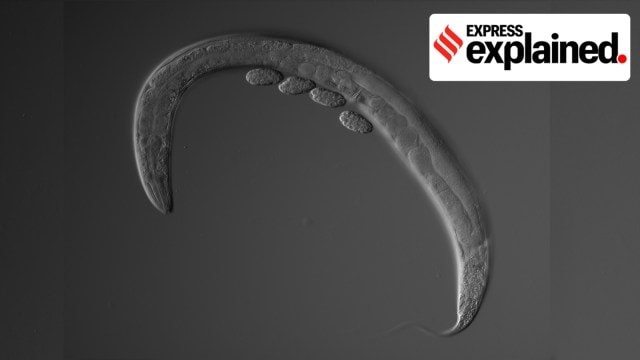
- 22 Oct 2024
In News:
The tiny nematode Caenorhabditis elegans (C. elegans) has played an outsized role in scientific discovery, contributing to four Nobel Prizes over the years.
Key Discoveries from C. elegans Research
- C. elegans and Cellular Processes:
- The worm has helped scientists understand programmed cell death (apoptosis), a vital process in development and disease. This work contributed to the 2002 Nobel Prize in Physiology or Medicine, addressing how cells are instructed to kill themselves and how this process goes awry in conditions like AIDS, strokes, and degenerative diseases.
- Gene Silencing and RNA Interference:
- In 2006, a Nobel Prize was awarded for the discovery of gene silencing via RNA interference (RNAi), a process first explored using C. elegans. This discovery led to the development of a new class of RNA-based drugs.
- Cellular Imaging Techniques:
- In 2008, C. elegans contributed to breakthroughs in cellular imaging, as its use helped invent cellular “lanterns” that allowed scientists to visualize the inner workings of cells, earning a Chemistry Nobel.
- Gary Ruvkun’s 2024 Nobel:
- Gary Ruvkun’s Nobel Prize in Physiology or Medicine in 2024 was the fourth in a series of Nobel recognitions stemming from C. elegans research, reinforcing its role in fundamental biological discoveries.
Key Facts About Caenorhabditis elegans (C. elegans):
- Size: 1 millimeter long.
- Life Cycle: Completes in 3-5 days.
- Cell Count: 959 cells.
- Genome: First multicellular organism to have its full genome sequenced in 1998.
- Sexual Reproduction: Hermaphroditic (self-fertilizing) and male.
- Scientific Role: Used to study genetics, developmental biology, neuroscience, and cell biology.
- Nobel Prize Contributions: Four Nobel Prizes, including those in Physiology, Medicine, and Chemistry, for advancements in cell death, gene silencing, and imaging.
IAEA’s 2024 Climate Change and Nuclear Power Report
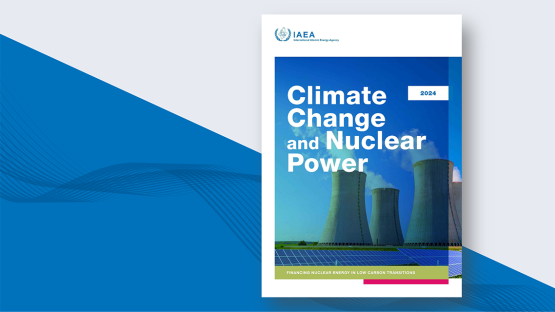
- 22 Oct 2024
In News:
- The 2024 edition of the IAEA’s Climate Change and Nuclear Power report has been released, highlighting the need for a significant increase in investment to achieve goals for expanding nuclear power.
- The new report was launched last week on the margins of the Clean Energy Ministerial (CEM) in Brazil.
Key Highlights:
- Nuclear Power's Role in Climate Change Mitigation:
- Nuclear energy is gaining global interest as nations seek to enhance energy security and decarbonize economies.
- To meet net-zero emissions by 2050, nuclear power is projected to play a pivotal role, with a projected capacity increase of 2.5 times the current level by mid-century in the IAEA's high case scenario.
- Investment Needs for Nuclear Expansion:
- Annual investment required to meet the IAEA's high case scenario (2050 nuclear capacity) is USD 125 billion, a significant increase from USD 50 billion annually from 2017-2023.
- If the aspirational goal to triple nuclear capacity (as pledged by over 20 countries at COP28) is to be met, USD 150 billion annually would be necessary.
- Challenges in Financing: Upfront capital for nuclear power plants is expensive, posing challenges, especially in market-driven economies and developing countries.
- Private Sector and Multilateral Support:
- The private sector will need to play a larger role in financing nuclear projects.
- The IAEA is engaging with multilateral development banks to improve financing options for developing countries to invest in nuclear energy.
- Private finance initiatives: In September 2024, 14 major financial institutions signaled readiness to help fund nuclear newbuild projects.
- Nuclear Financing at Clean Energy Ministerial (CEM):
- The IAEA report was launched during the 15th CEM in Brazil, a high-level forum for advancing clean energy technologies.
- Key stakeholders from Brazil, the IAEA, the International Energy Agency (IEA), and the U.S. discussed strategies for securing nuclear power financing, especially in the context of COP29 (2024) where clean energy financing will be a key focus.
- Nuclear Energy in the EU’s Sustainable Financing:
- The EU taxonomy for sustainable activities now includes nuclear power, facilitating the issuance of green bonds for nuclear projects in Finland and France (2023).
- EDF received €4 billion in green bonds and around €7 billion in green loans (2022-2024).
- Investment in Nuclear Power:
- To meet global climate goals, nuclear power capacity must increase by 1.8 times by 2035.
- Effective financing mechanisms are crucial to scale up nuclear power and develop the workforce and supply chains needed for the energy transition.
- Policy Reform and International Partnerships:
- The report advocates for policy reforms and international partnerships to bridge the financing gap and accelerate nuclear power deployment, particularly in emerging markets and developing economies.
- Focus on technologies such as small modular reactors (SMRs), which could play a role in the energy transition.
- Key Areas to Support Nuclear Growth:
- Robust regulatory frameworks and new delivery models are essential to unlock investments.
- Development of skilled labor and effective stakeholder engagement is crucial for the expansion of nuclear energy.
- Energy System Modelling and Planning:
- The IAEA’s energy system modelling tools assist countries like Brazil in planning nuclear power projects, including cost analyses for electricity generation and financing strategies.
Role of the International Atomic Energy Agency (IAEA):
- Mandate: The IAEA is the leading international body for promoting the safe, secure, and peaceful use of nuclear energy and technologies.
- Functions:
- Nuclear safeguards: Ensuring nuclear activities remain peaceful and preventing the diversion of nuclear materials for weapons purposes.
- Assisting member states with technical support, knowledge sharing, and strengthening nuclear safety and security.
- The IAEA also supports capacity-building and emergency response in case of nuclear or radiological incidents.
- Structure:
- The IAEA General Conference is made up of all 178 member states, meeting annually to approve budgets and policies.
- The Board of Governors (35 members) meets several times a year to oversee the agency's activities and appointments.
- Headquarters: Vienna, Austria
- The IAEA is part of the United Nations family, reporting to both the UN General Assembly and the Security Council.
